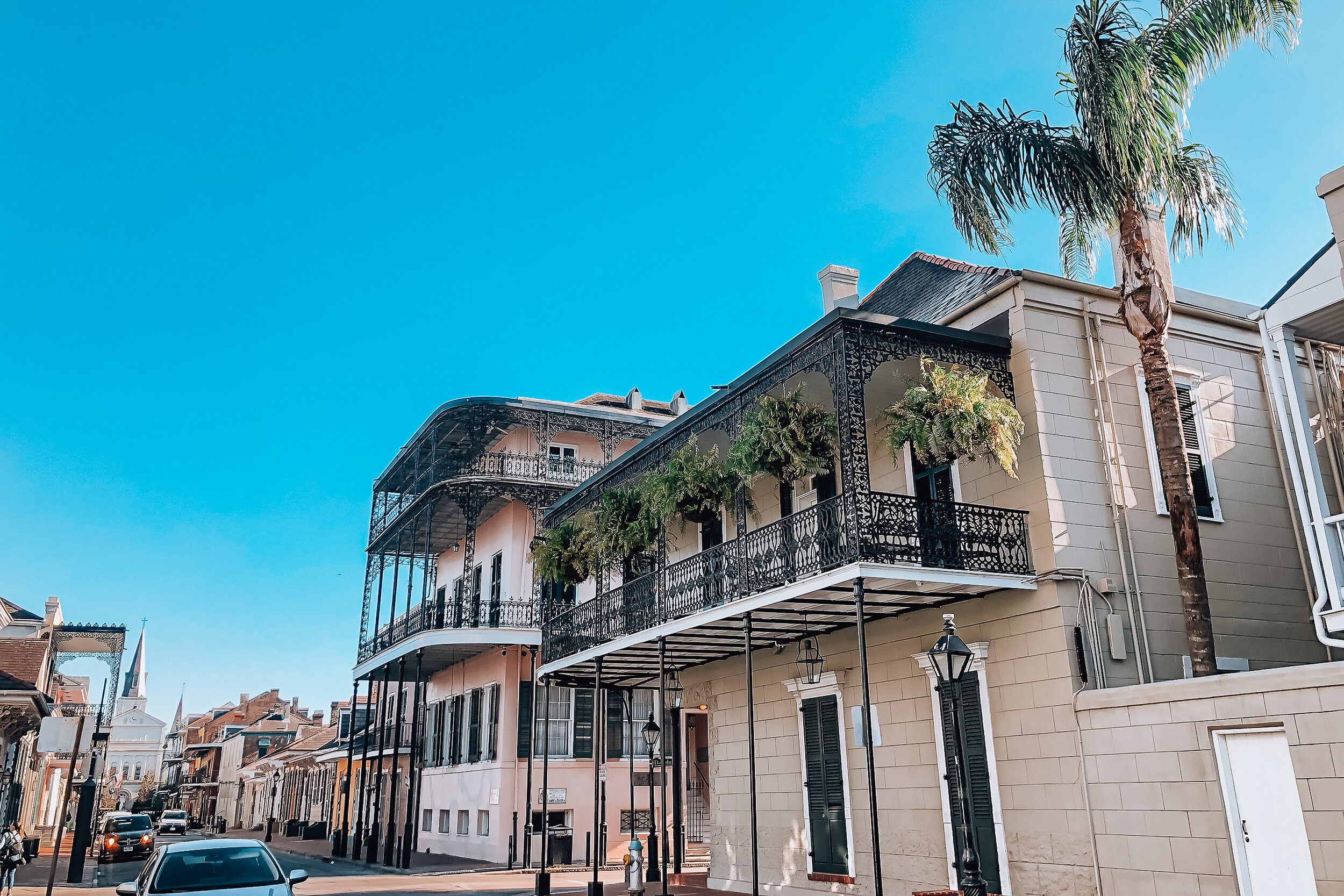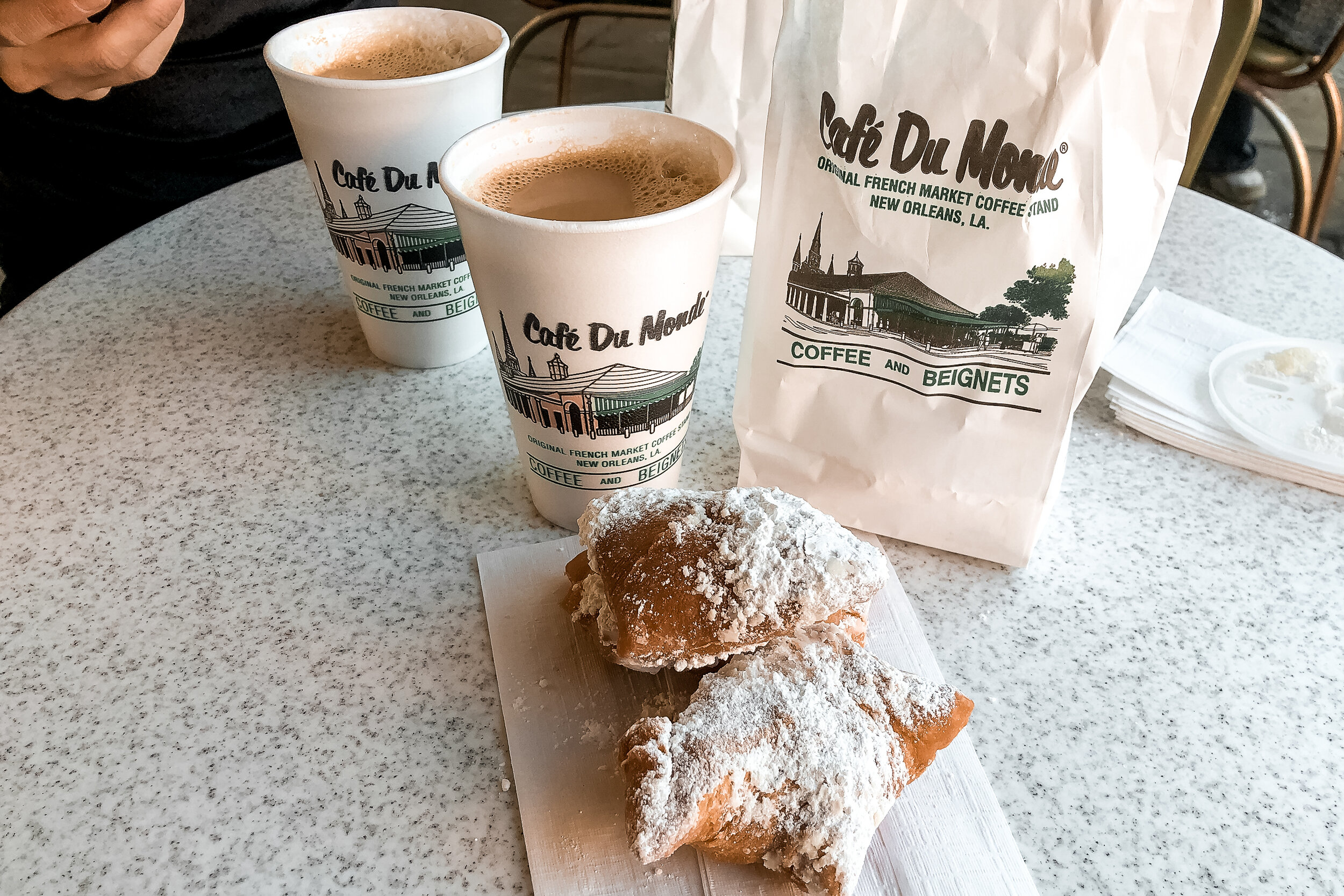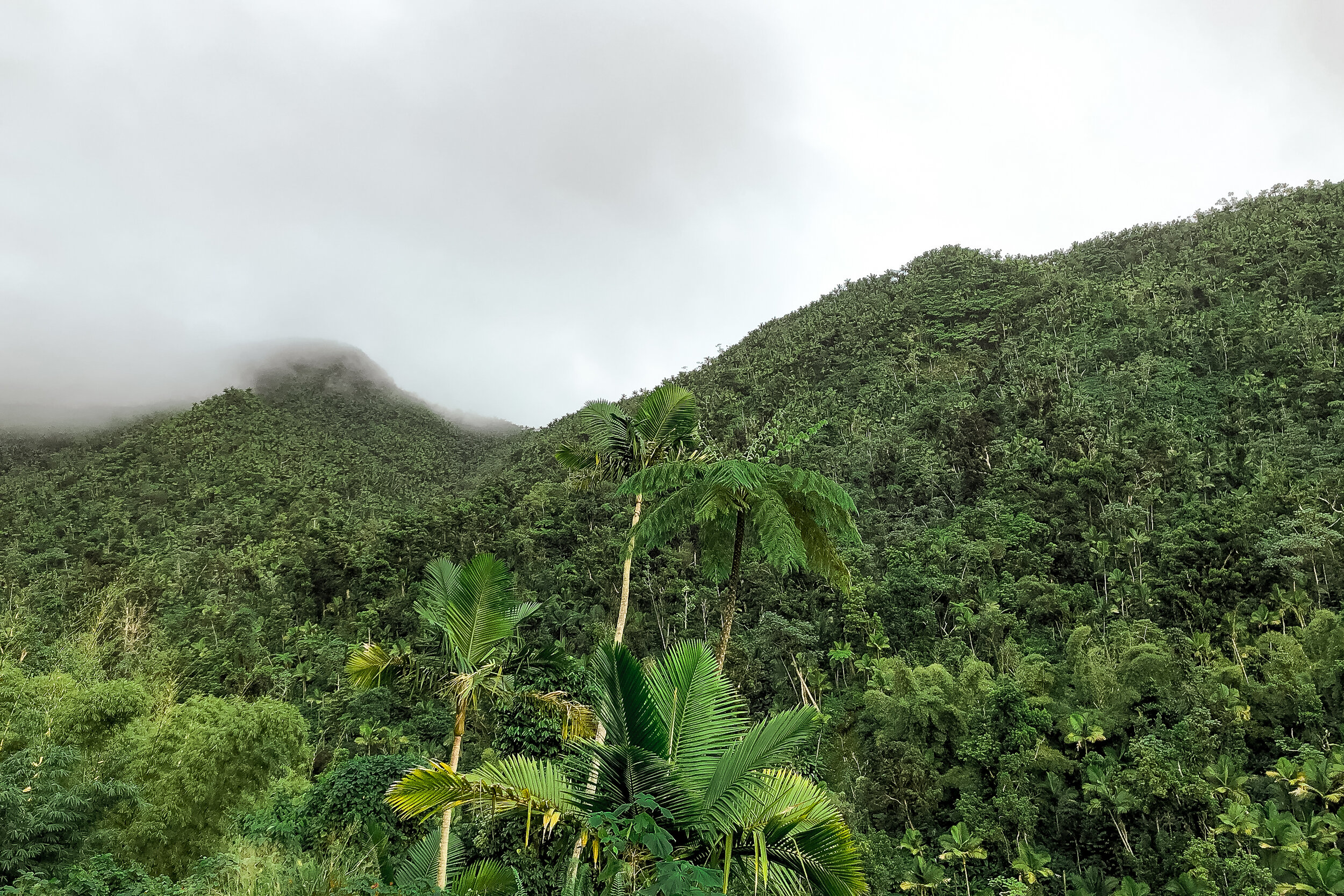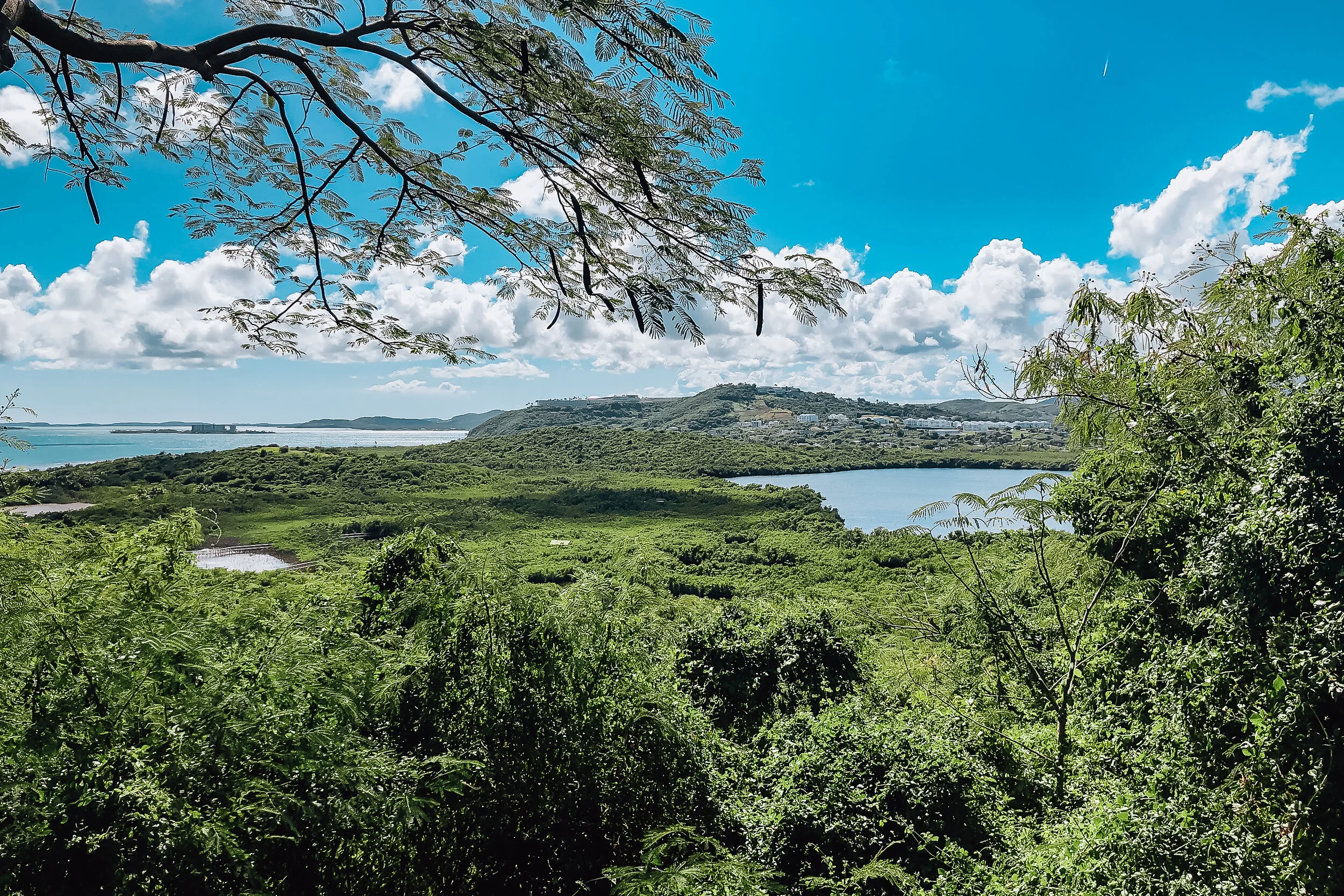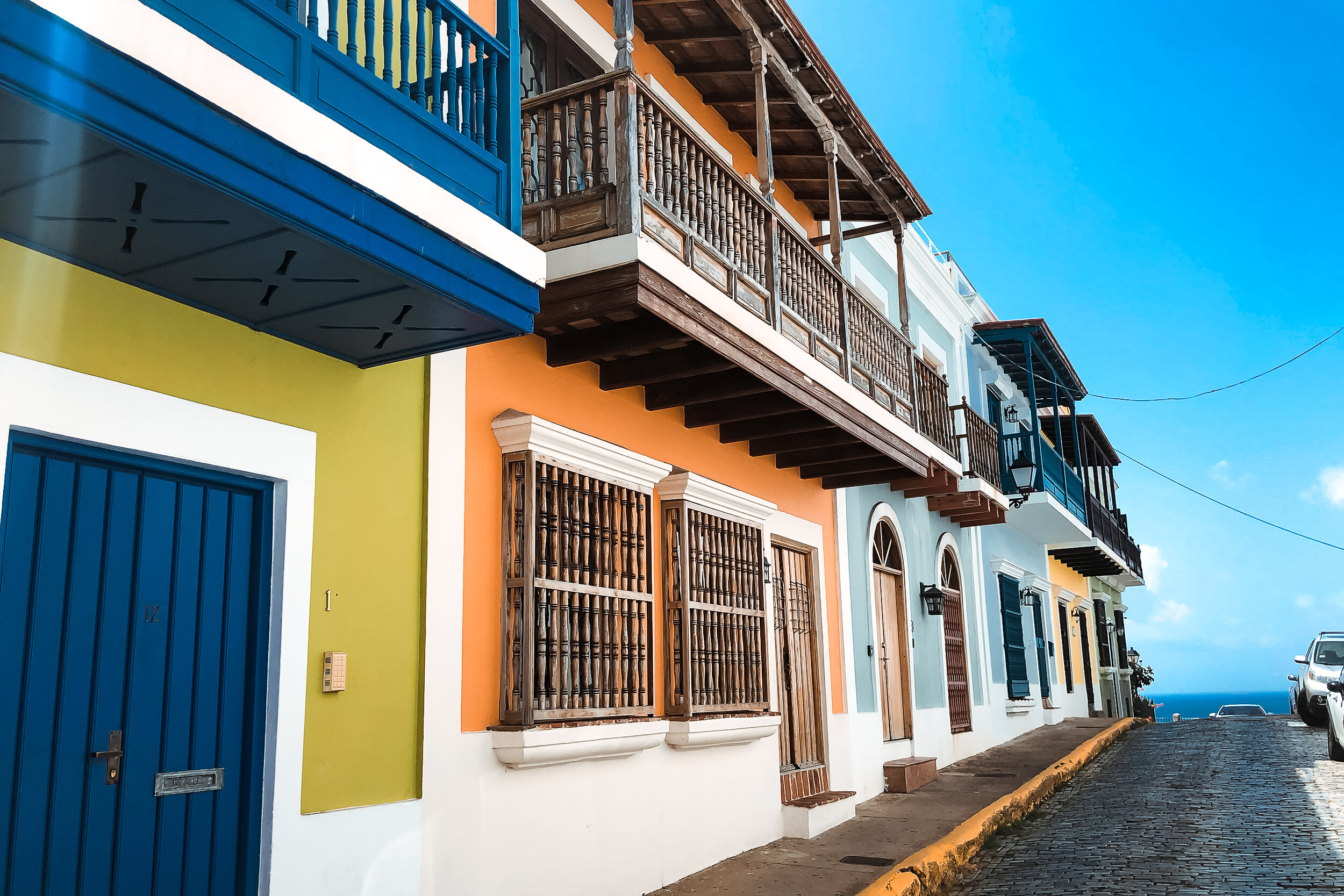The Peruvian Coast
Peru’s coast is home to breath taking landscapes, the ruins of ancient civilizations and an unparalleled level of cuisine.
Peru, Ancient Land of Mysteries
Peru is known for many great things, including the ruins of ancient civilizations, stunning nature and an unparalleled level of cuisine. We toured Lima and explored the Peruvian coast visiting numerous towns by bus including Pisco, Paracas, Ica and Huacachina and Nasca. During our past two trips along the Peruvian Coast, we were able to have authentic and local experiences through our own exploration and the eyes of multiple friends we met along the way.
Lima, The Capital of Peru
Lima is an expansive coastal city with stunning ocean views, Spanish colonial architecture, ancient ruins, catacombs, important cultural sights and irresistible cuisine, especially the seafood. In fact, we credit this trip with converting us from vegetarians into pescatarians. Lima is often an entry point to the country and jumping off point for other Peruvian destinations.
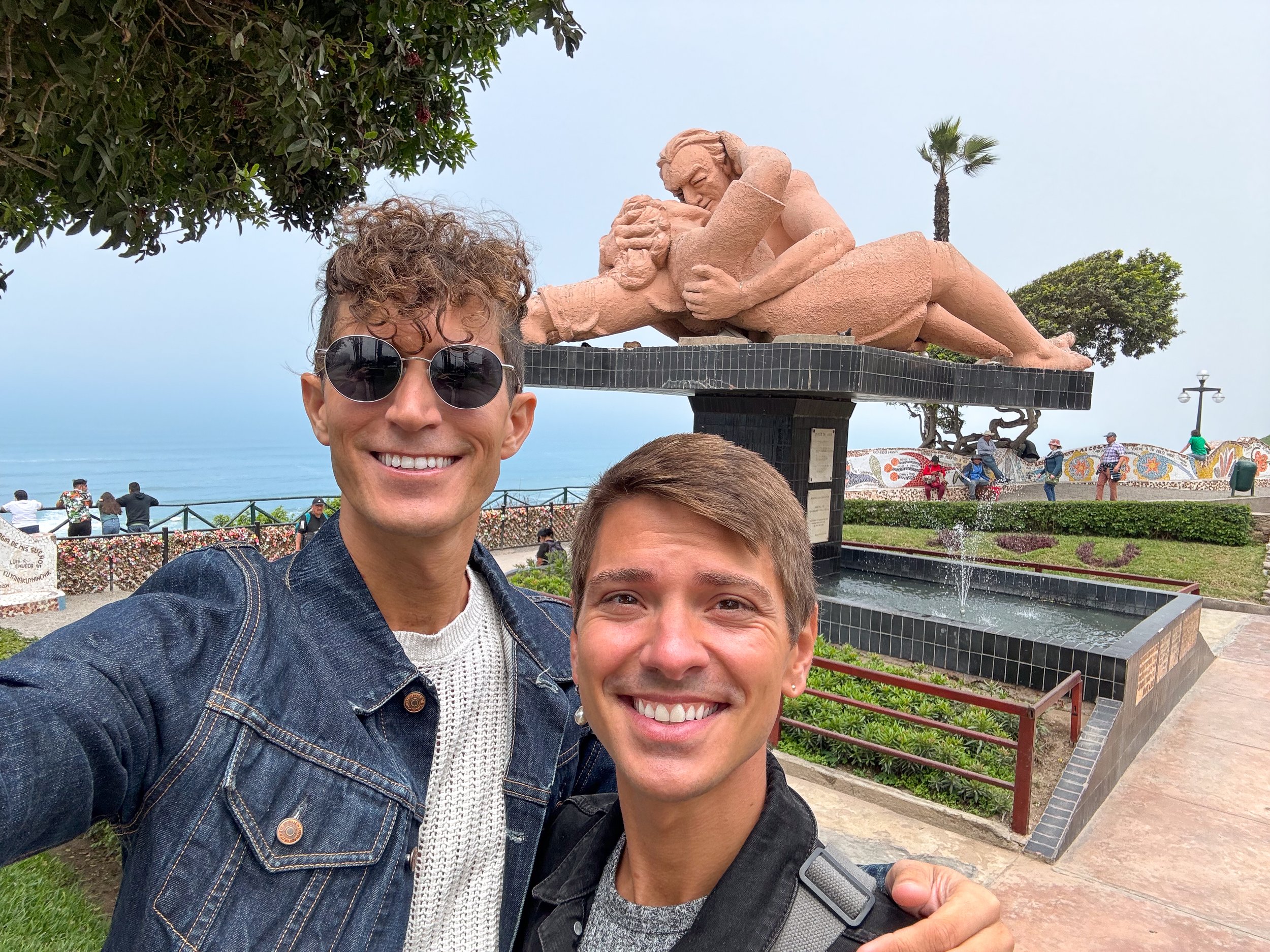
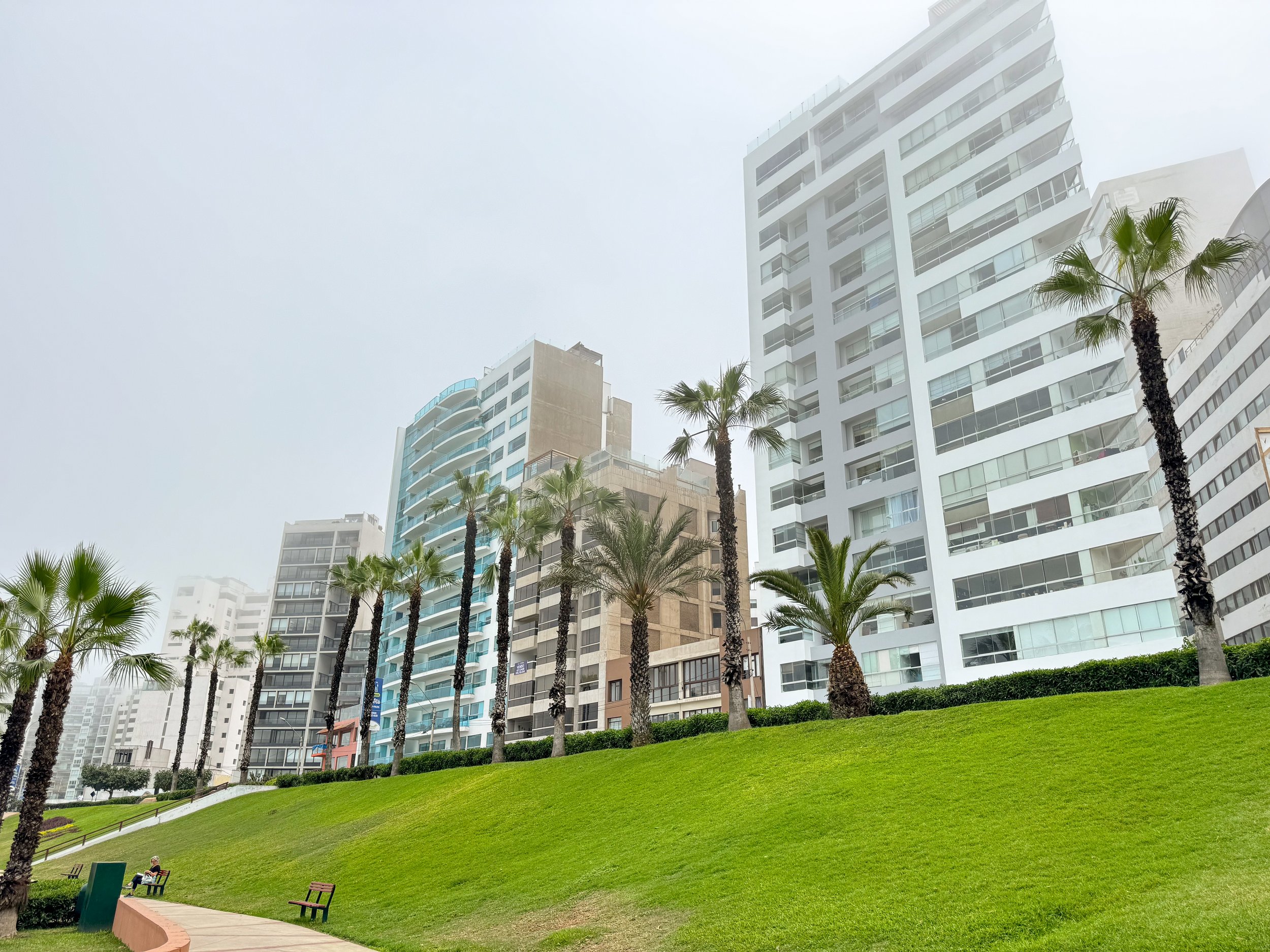
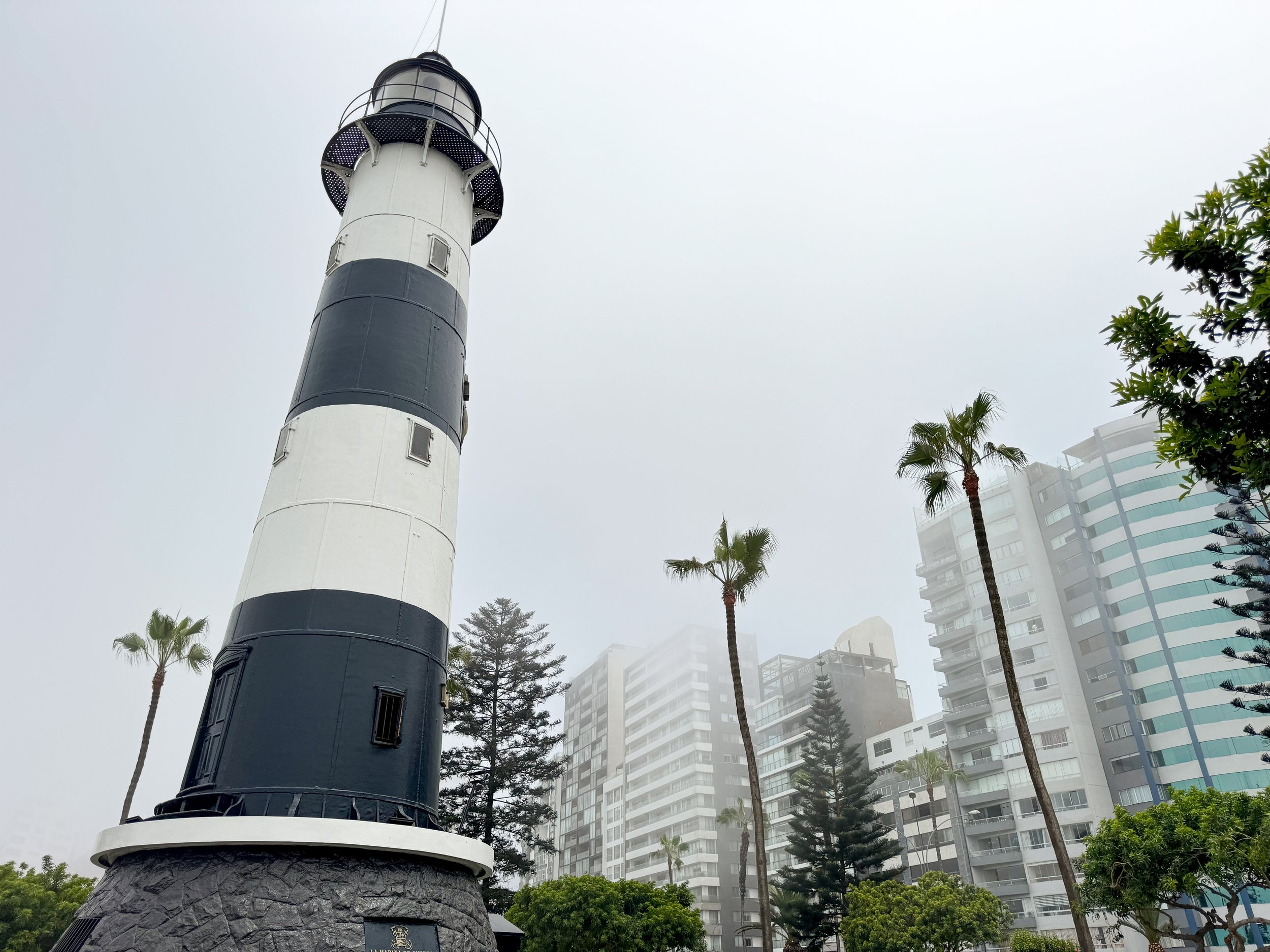
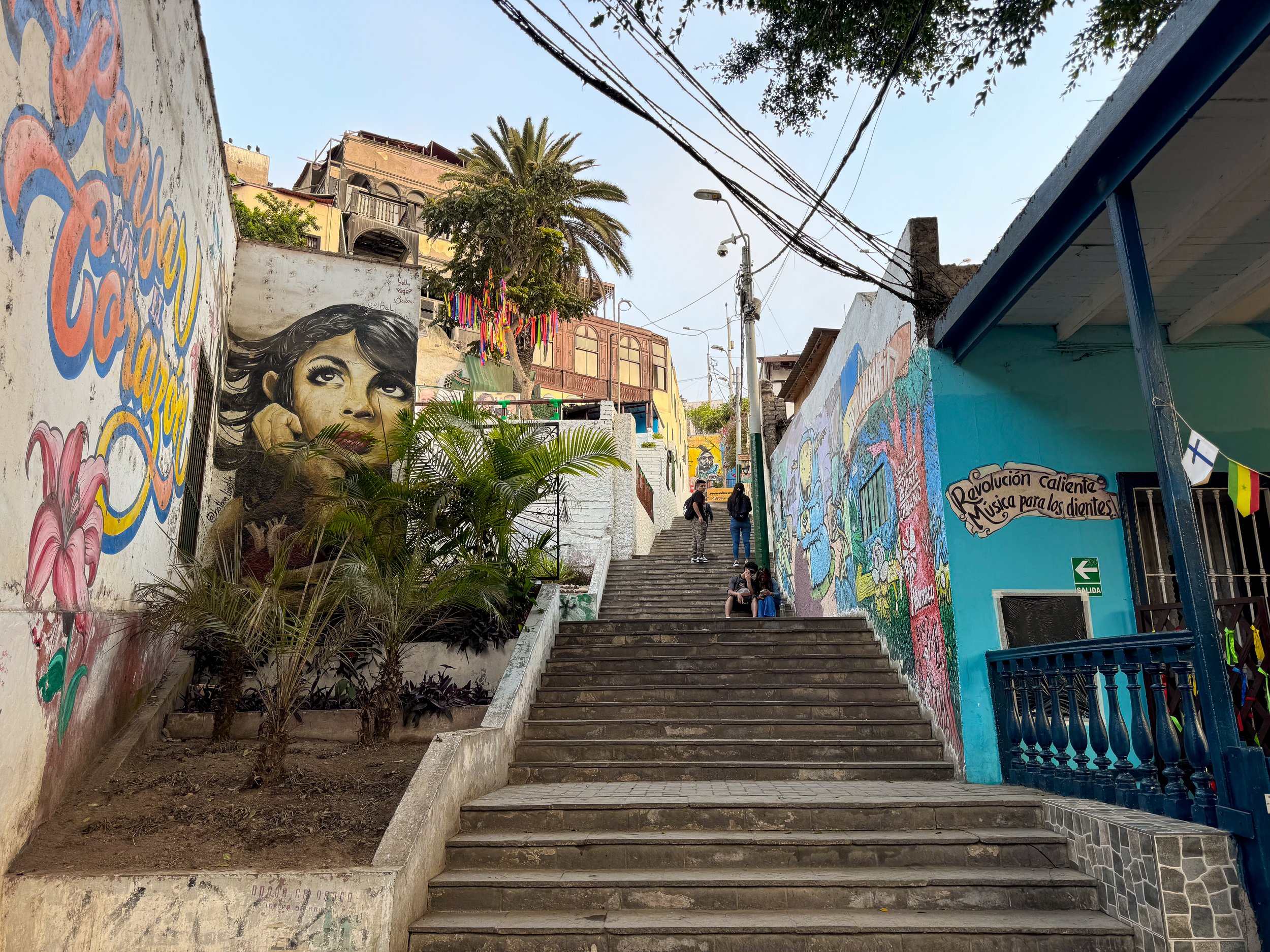
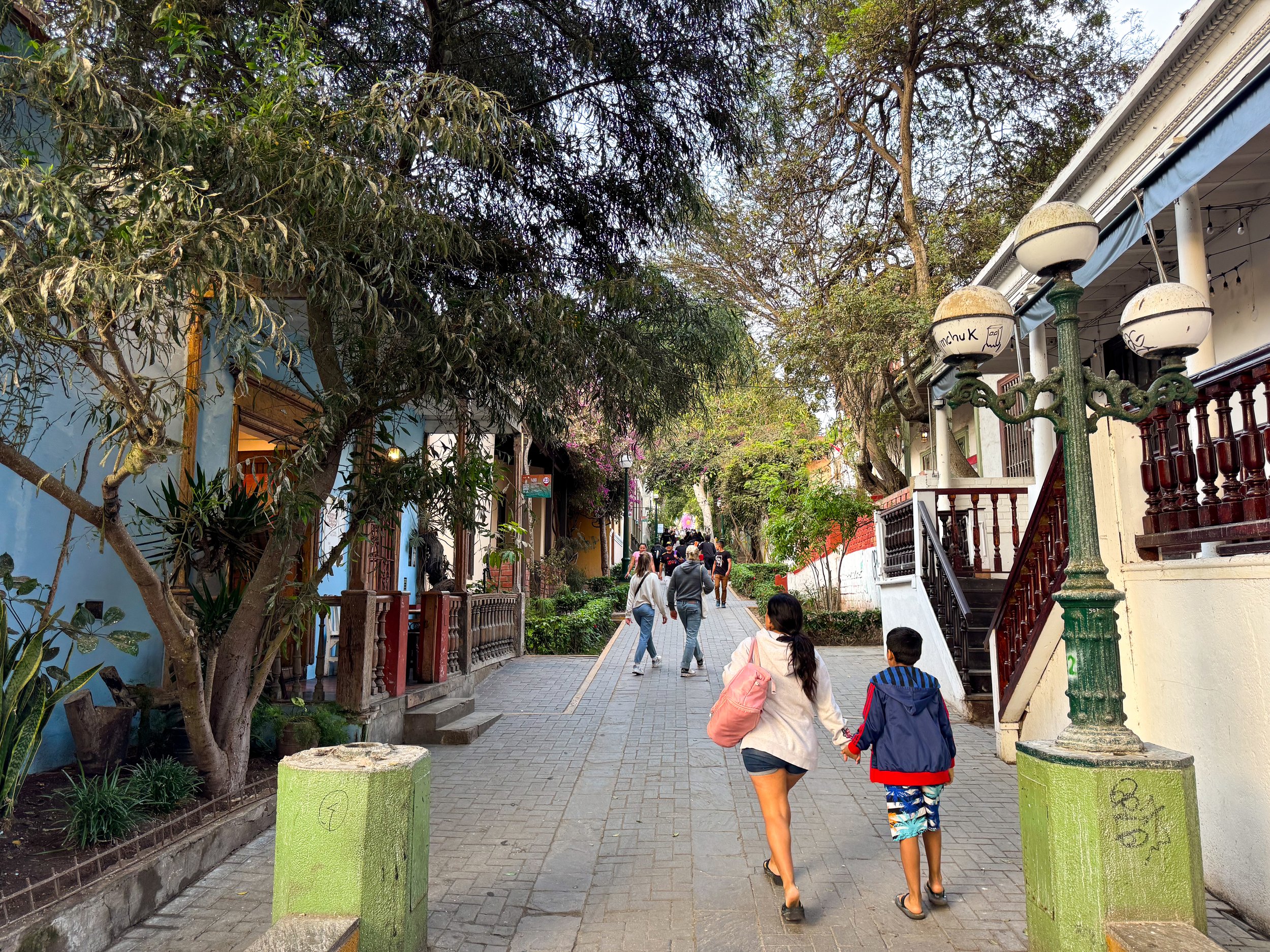
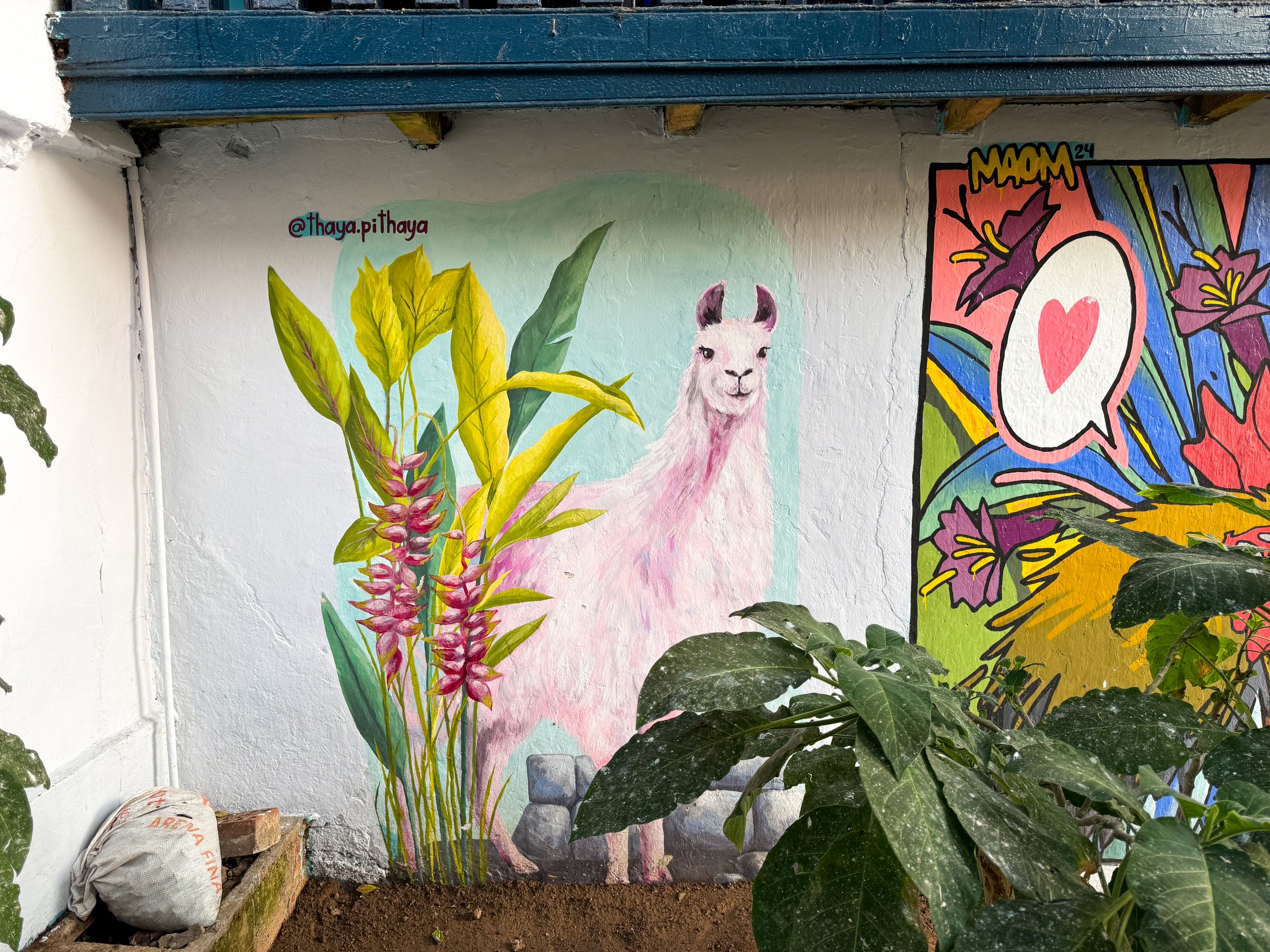
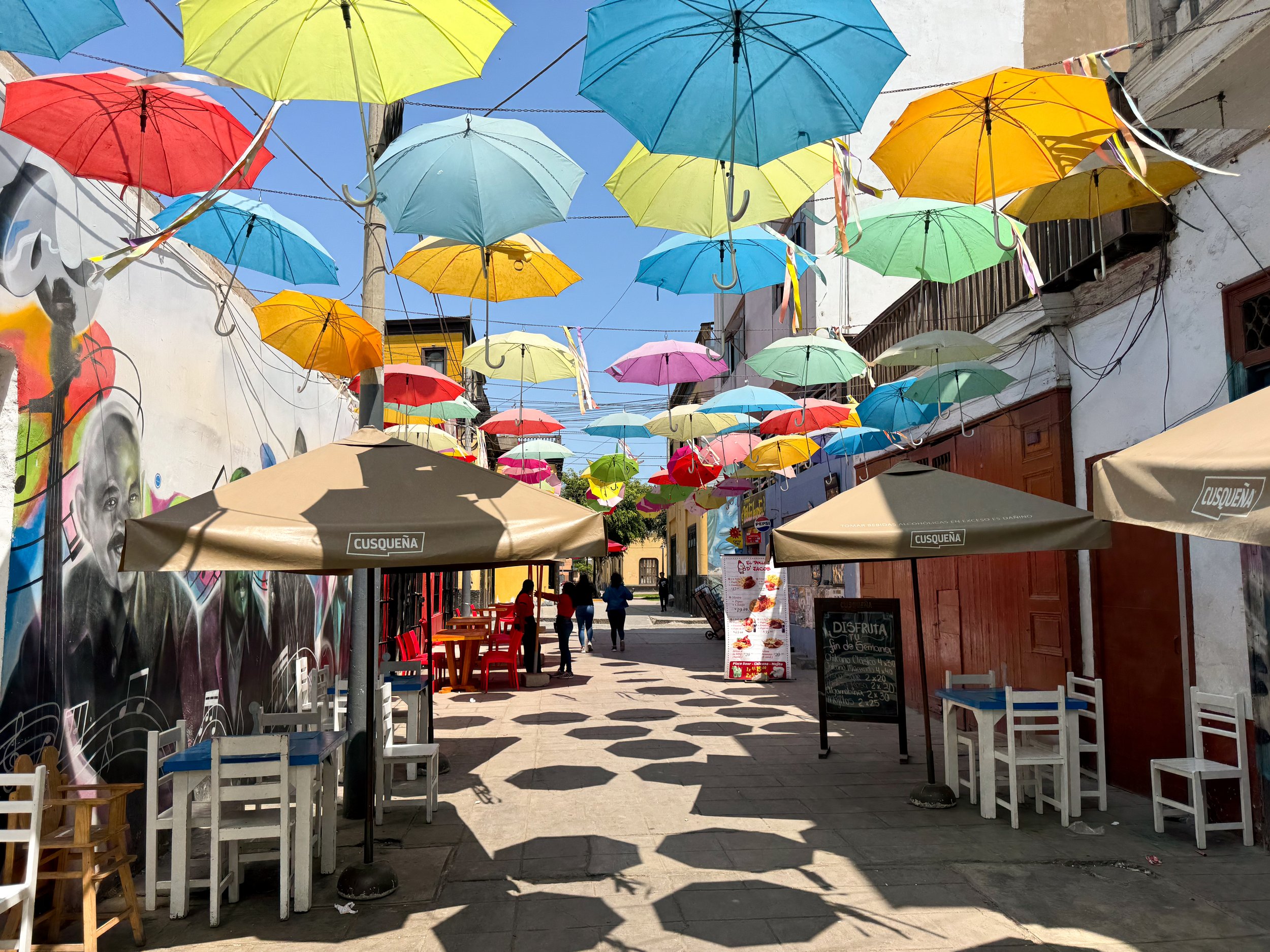


Our Favorite Neighborhoods
Miraflores, which translates to “Look at the Flowers” is a green neighborhood in the heart of the city with lush parks and coastal visitas. It’s an elevated area with modern skyscrapers, beautiful residences and many restaurants.
Locramar. An outdoor shopping mall in Miraflores with stores, restaurants and bars built into a cliff overlooking the Pacific Ocean.
Cat Park. A tiny park, home to at least 100 kittens and cats cared for by the city. Come here to cuddle and play with them as they wander the park.
Love Park. A park along the seaside cliff in Miraflores with a large terracotta sculpture of two lovers lying and embracing, wavy colorfully tiled walls and a fence with heart shaped locks.
Barranco, another coastal neighborhood with an old world feel, local vibes and welcoming atmosphere. The neighborhood is walkable making it easy to spend time exploring by foot. We walked along narrow tree lined streets, through flowering parks, past historic buildings and admired the creative street art. There are plenty of bars, restaurants and coffee shops making it a lovely place to stay or visit.
Parque Federico Villarreal. A park with an abandoned cathedral and pedestrian walkway leading from the top of the neighborhood to a lookout over the ocean past several restaurants, bars, cafes, art galleries and shops. The lookout is a beautiful spot to watch the sunset.
Puente de los Suspiros. A wooden pedestrian bridge with views of the walkway below.
Parque Municipal de Barranco. A historic plaza in the heart of the neighborhood with colonial architecture including a yellow neoclassical cathedral, a pink library and reflecting pool with a Greek style fountain.
Callao, a neighborhood known locally for its fishing port and seafood restaurants. We explored the streets and sights around the central plaza where stopped to eat ceviche and drink pisco sours. The area outside of the central plaza is considered unsafe to visit.

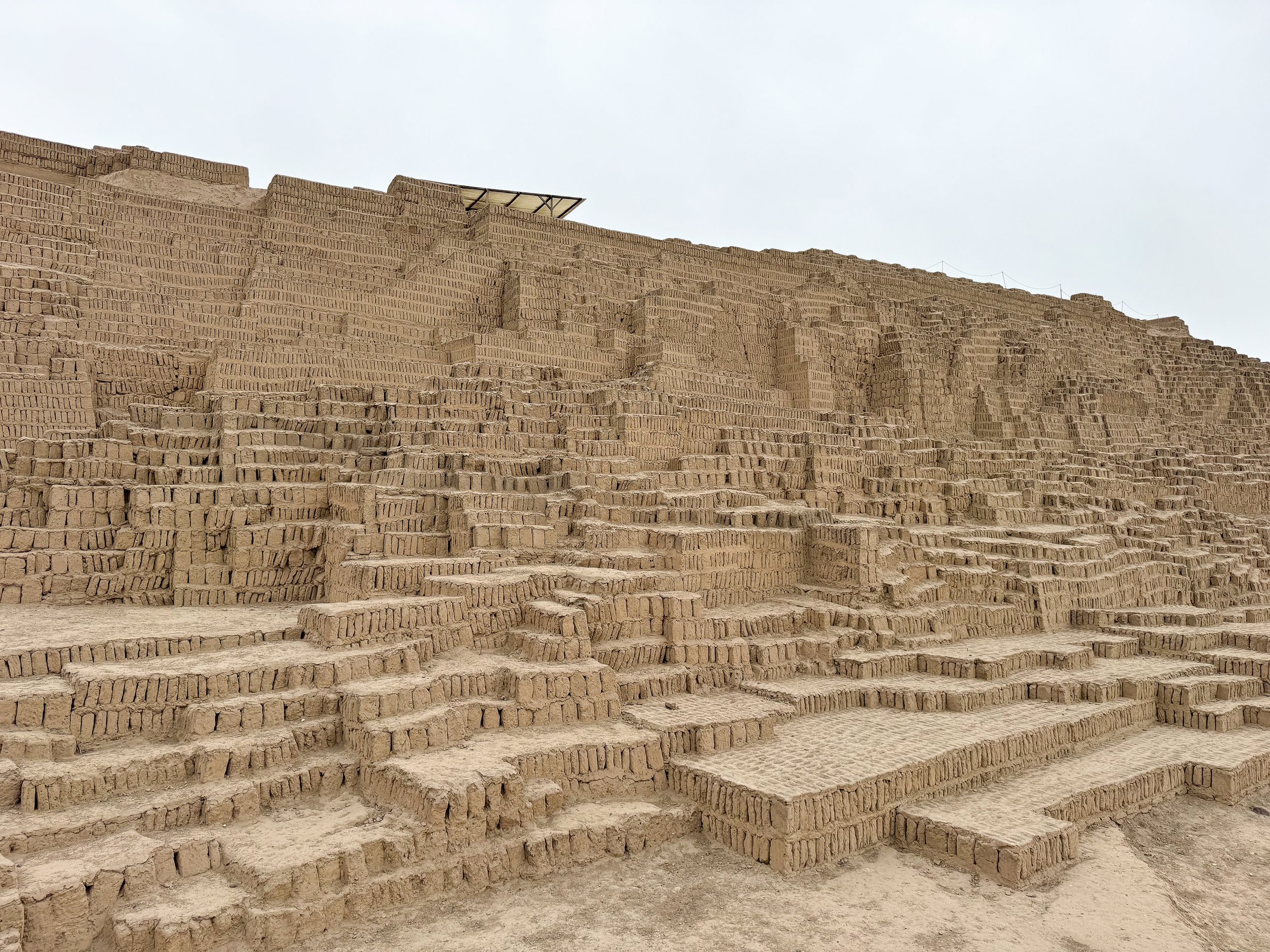
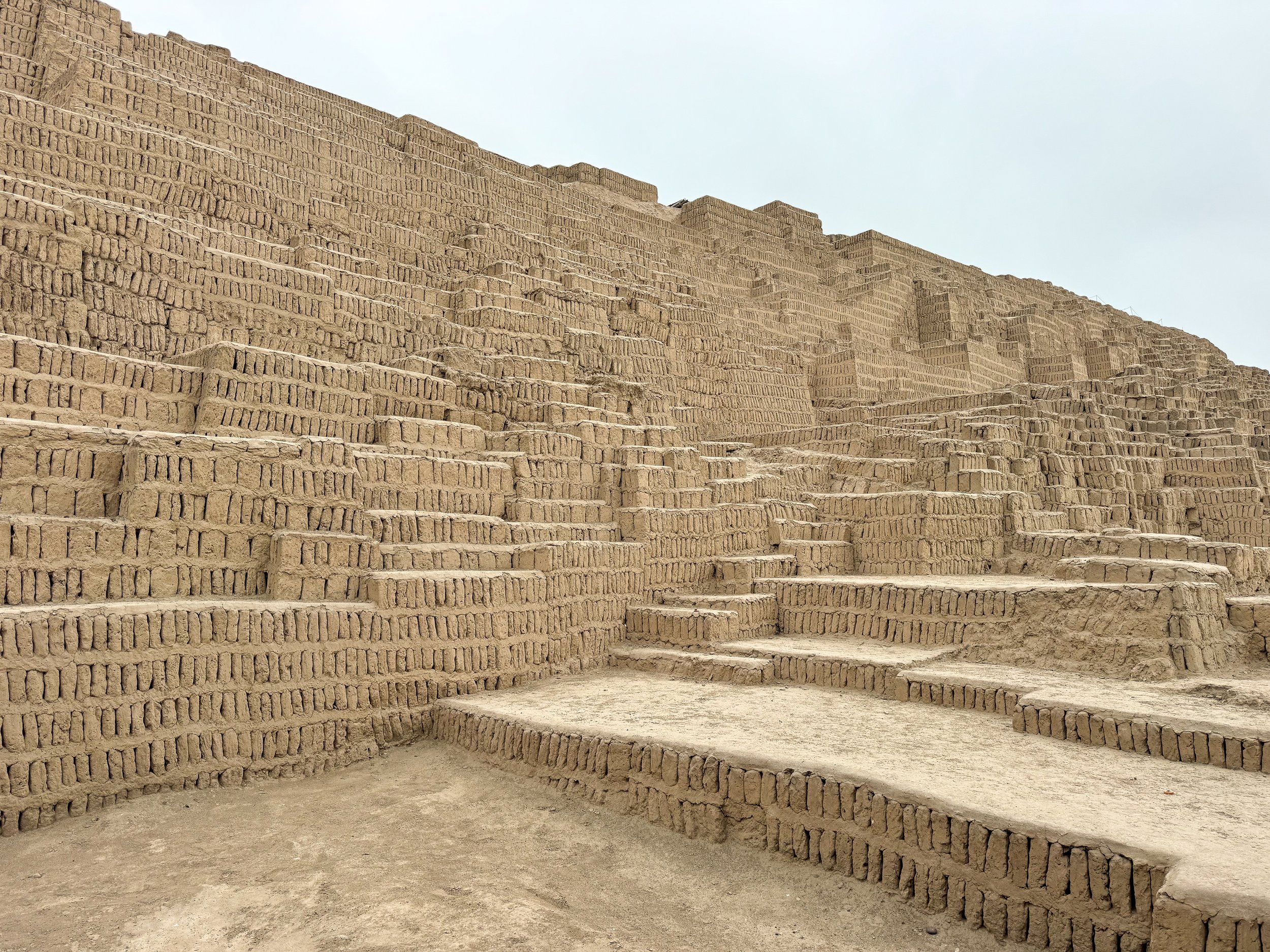
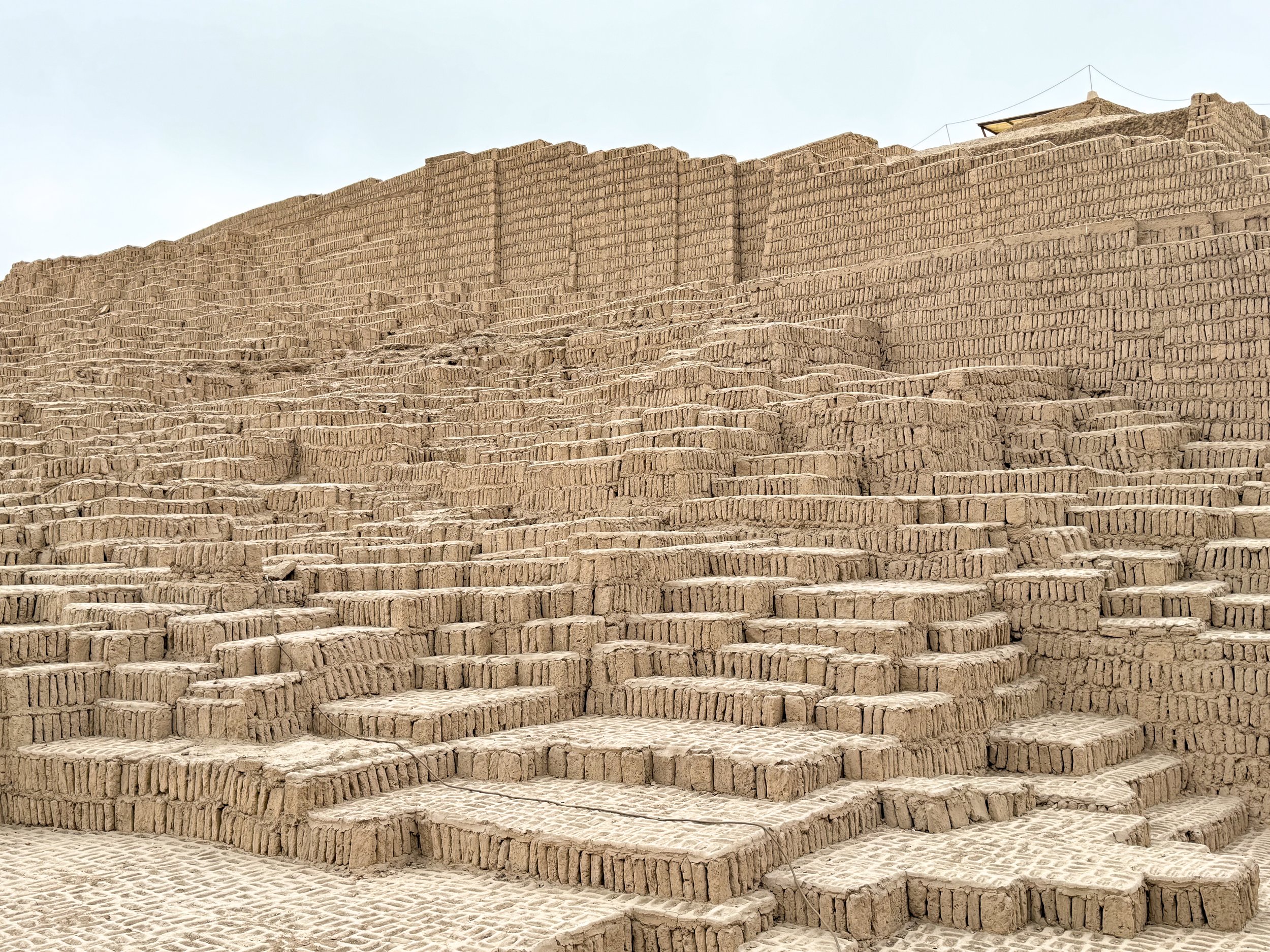
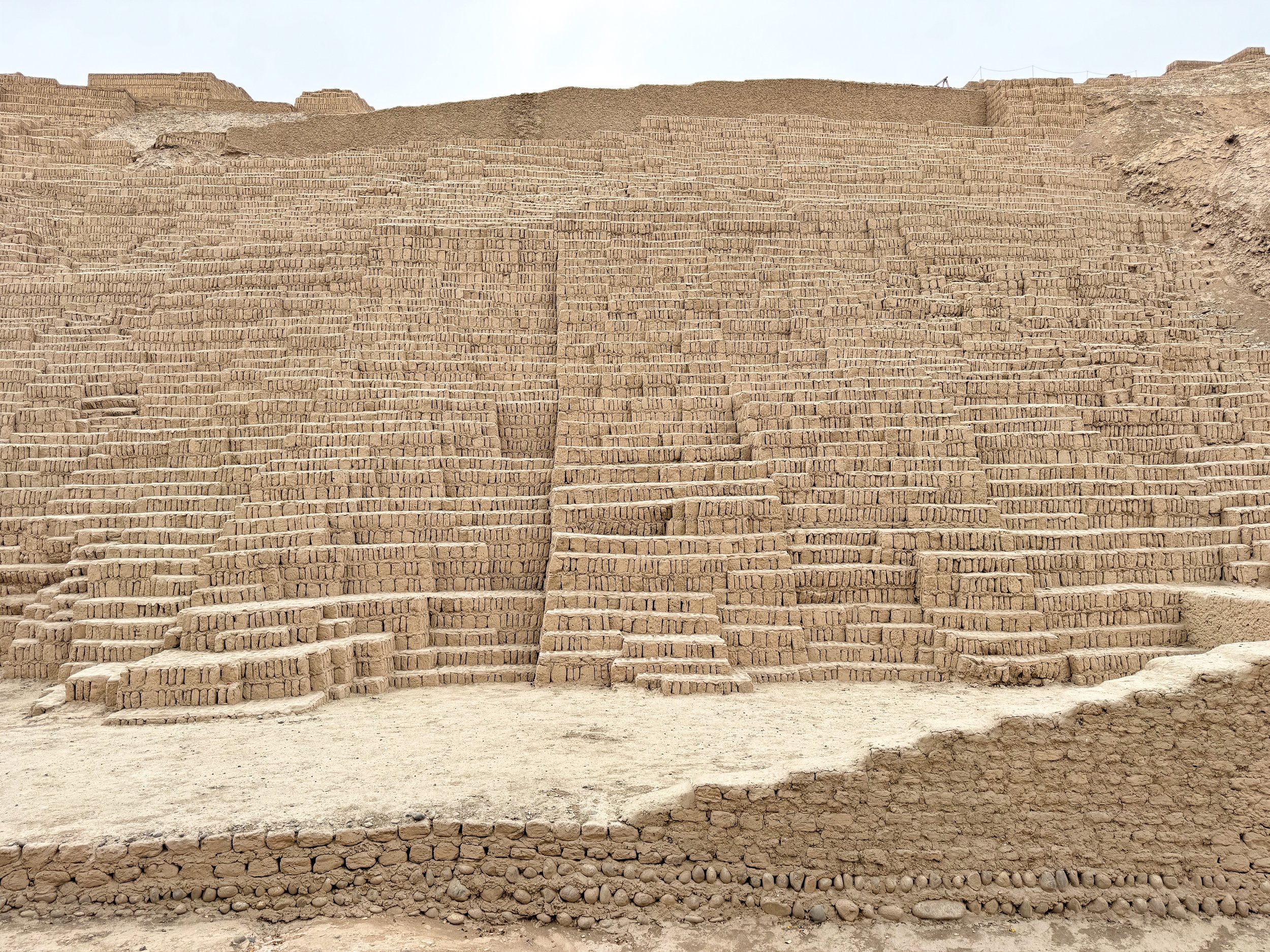
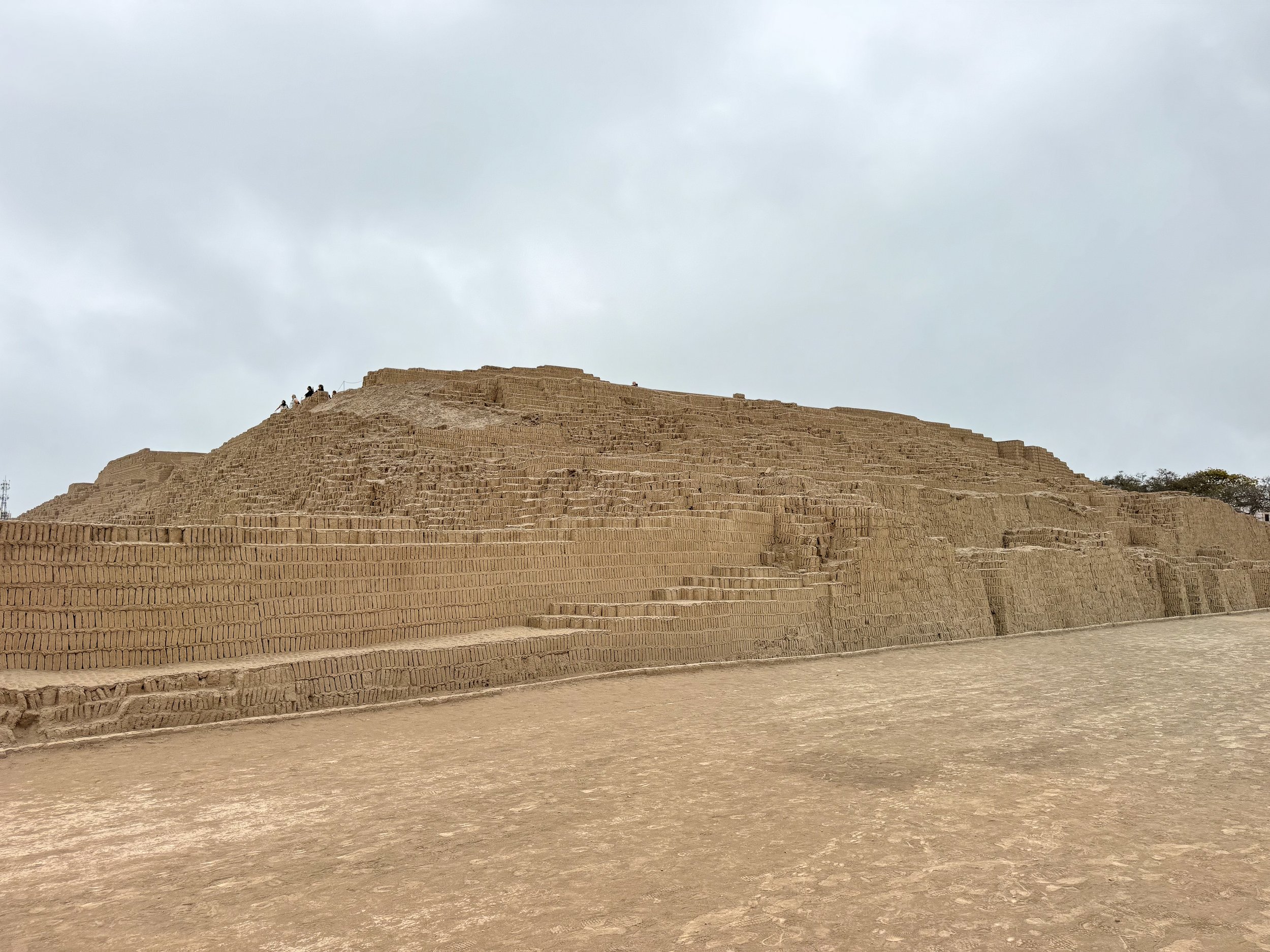
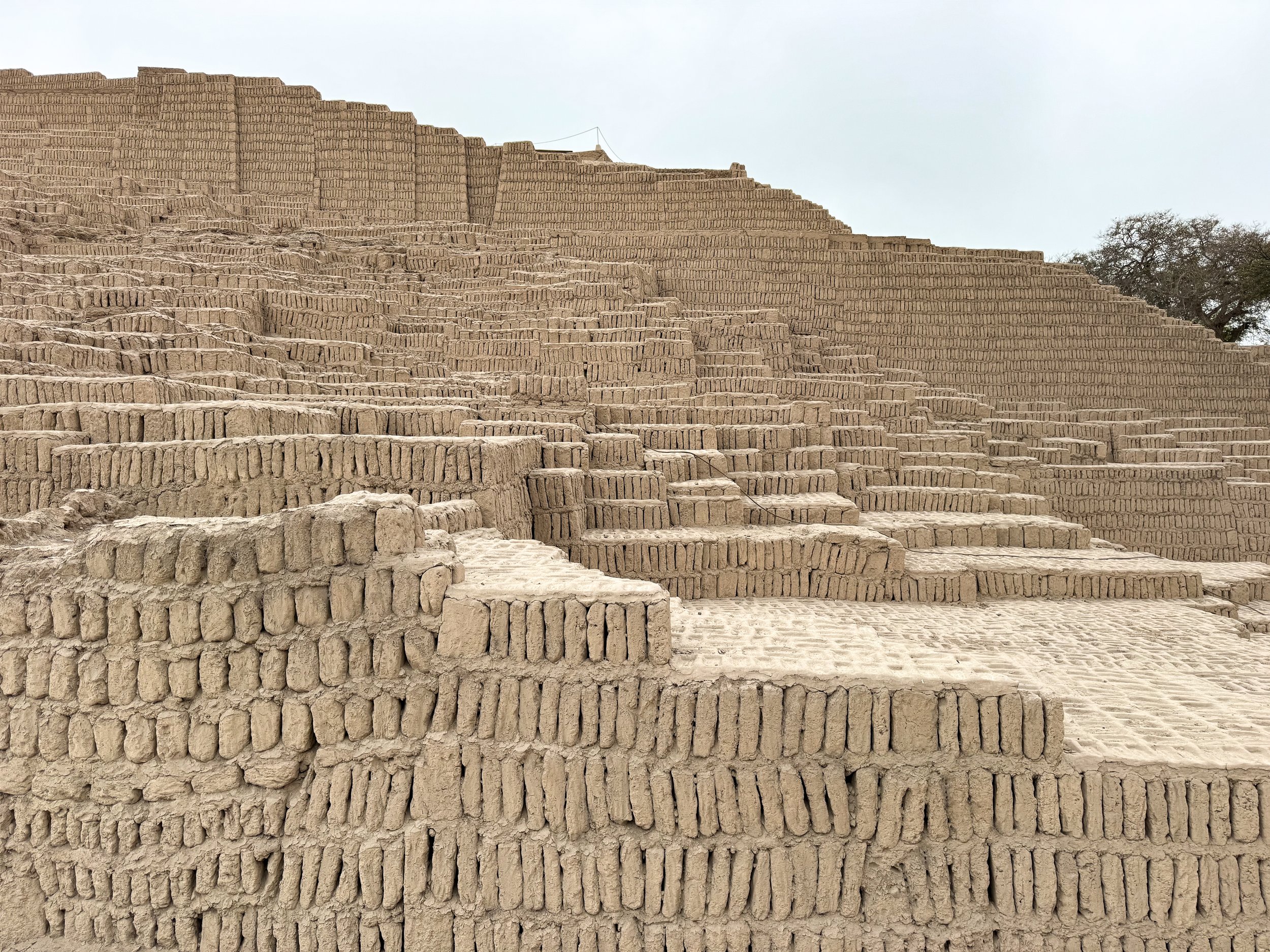
Sights & Museums
Huaca Pucllana Site Museum. An expansive adobe brick ruin that pre-dates the Incas. The grounds include the remains of a pyramid and many smaller structures. The pyramid is believe to have been used for ceremonial and sacrificial purposes. The ruins of other structures are thought to have been used for agricultural storage and administrative purposes for overseeing the civilization’s irrigation practices.
The sight is located in the middle of Lima, surrounded by modern civilization offering a unique contrast. It can only be toured by guide, available from the ticket office. With our guides, we spent over an hour walking its pathways, courtyards and on top of the massive structure.
Paragliding. The cliffs of Lima provide the perfect location for paragliding! Having never tried it before, we decided to give it a try. Taking off using on an improvised fan powered parachute, we soared into the air. From above, we overlooked the pacific coast and entirely of Lima, flying between Miraflores and Borranco before landing back at the beach. Our flight lasted about 20 minutes.
The Magic Water Circuit. It sounds extra touristy and it kind of it but it doesn’t make it any less grand. You’ll be treated to a light and water show within the park’s fountains, depicting holograms, images and music telling the story or Peru.
The Catacombs. A UNESCO World Heritage Site, located beneath the Basílica y Convento de San Francisco. The catacombs are lined with the skulls and bones of tens of thousands of humans, all uniquely organized and arranged in an array of terrifying yet beautiful patterns. No photos are allowed to be taken.
Plaza de Armas. The city’s historic center and main plaza. It’s surrounded by stunning government buildings, palaces and cathedrals.
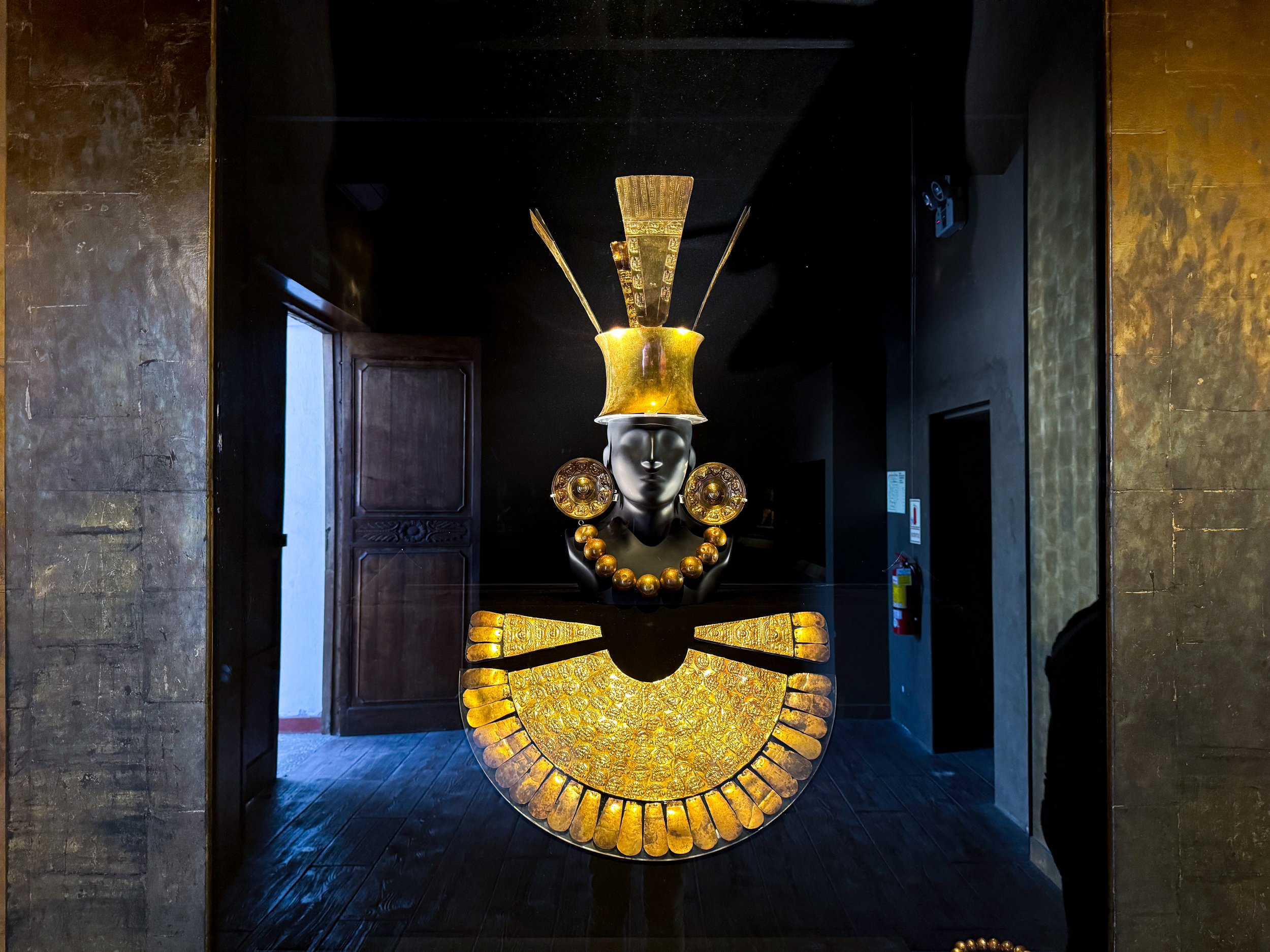
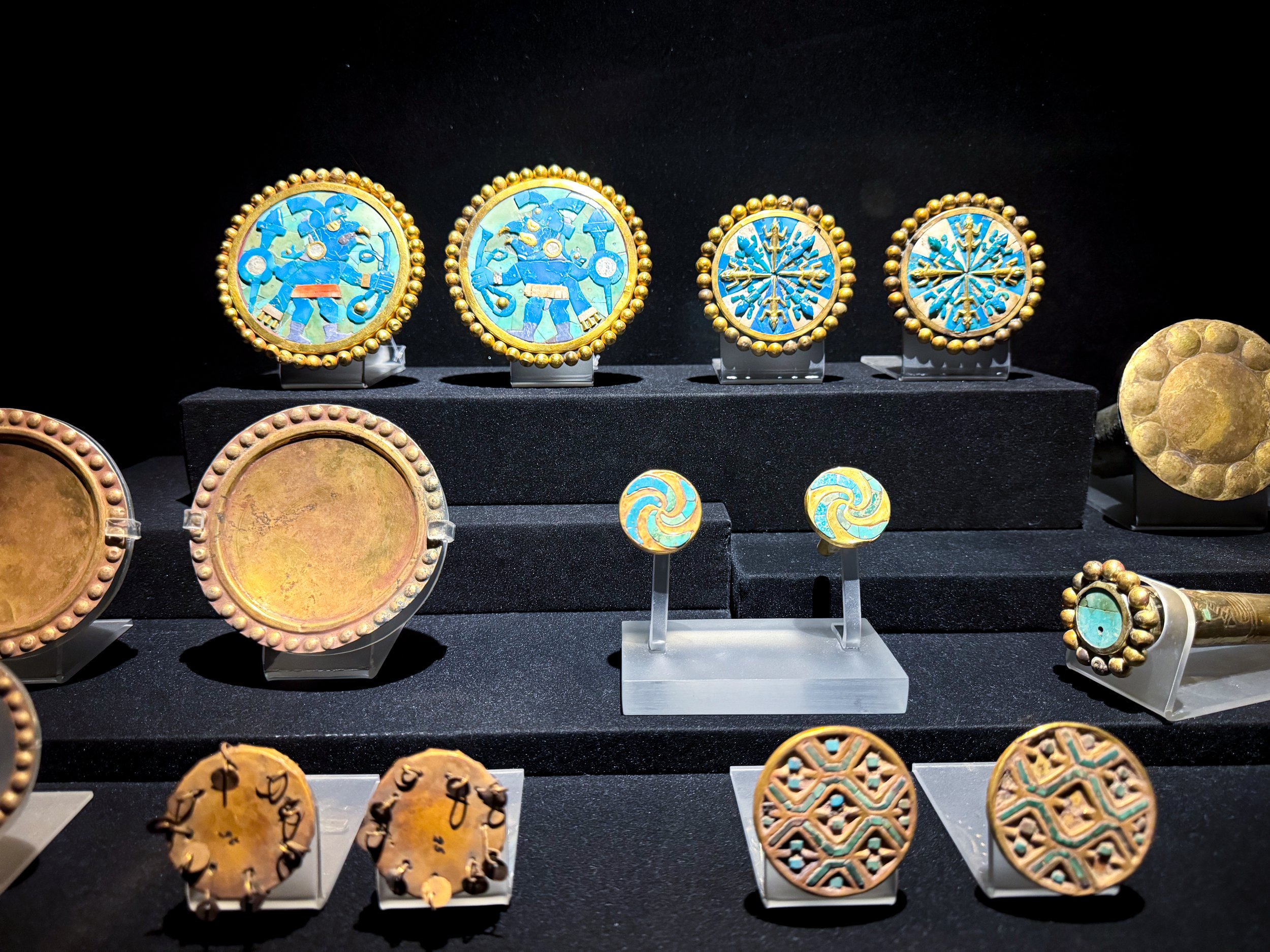
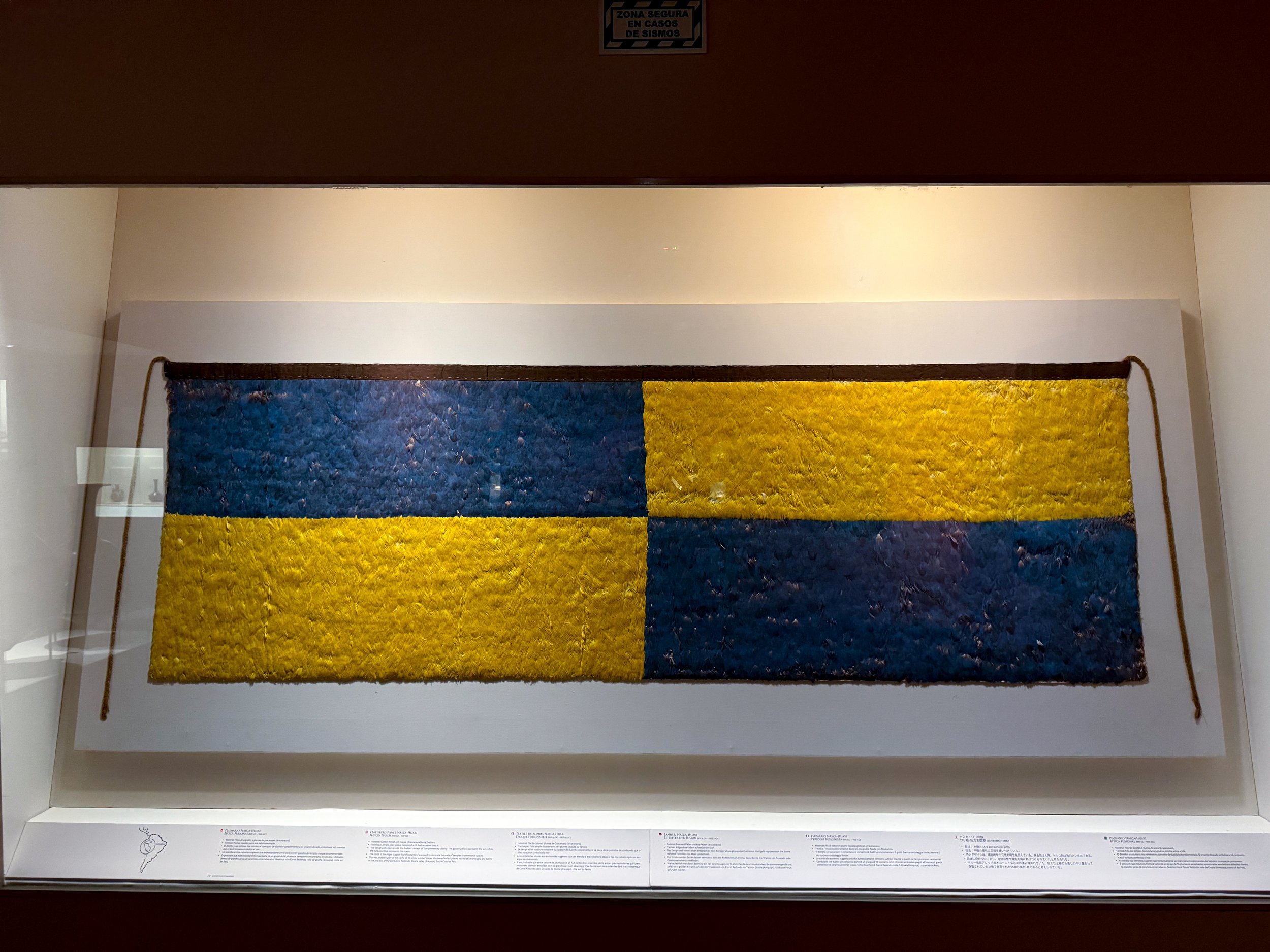
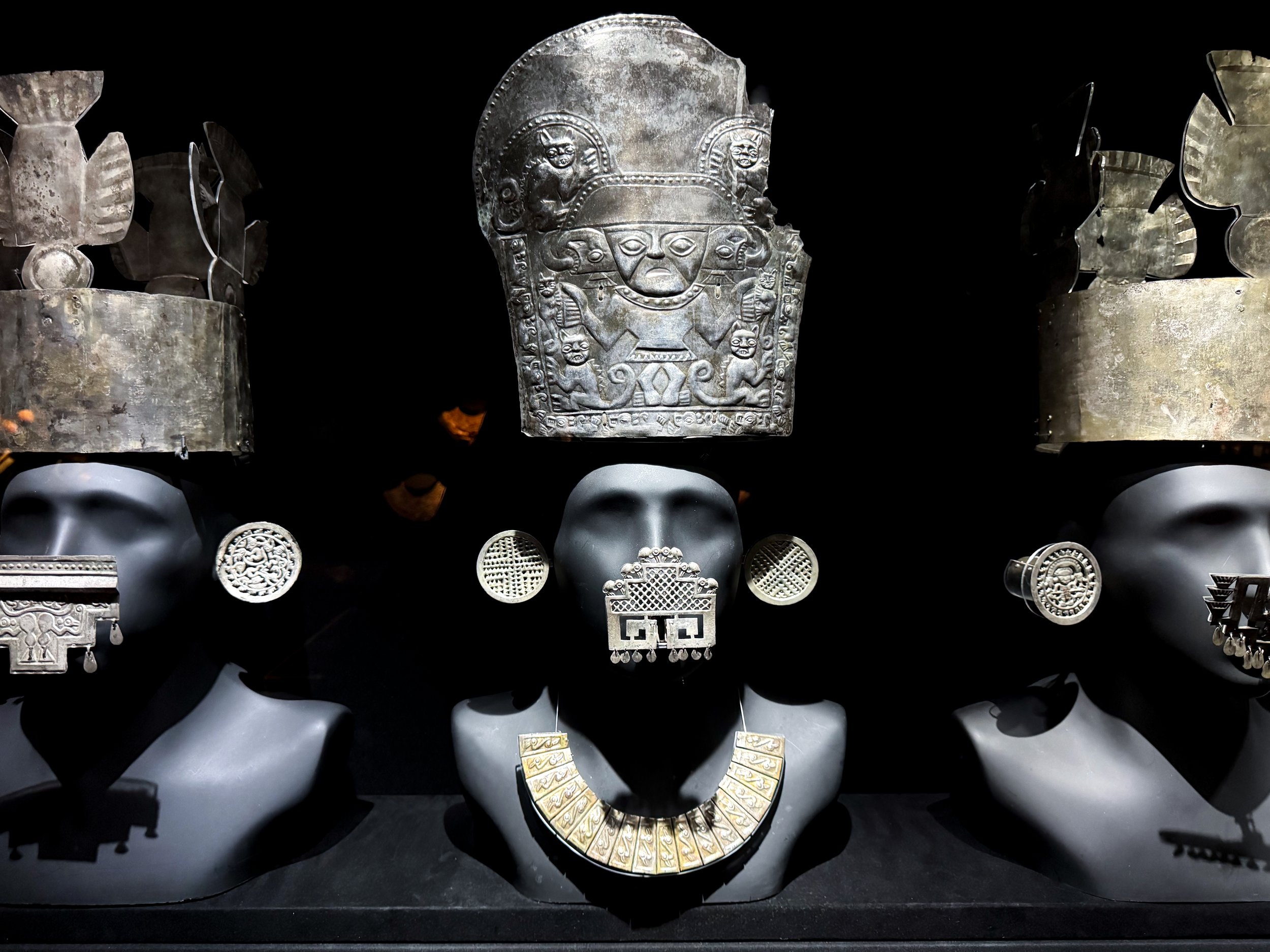
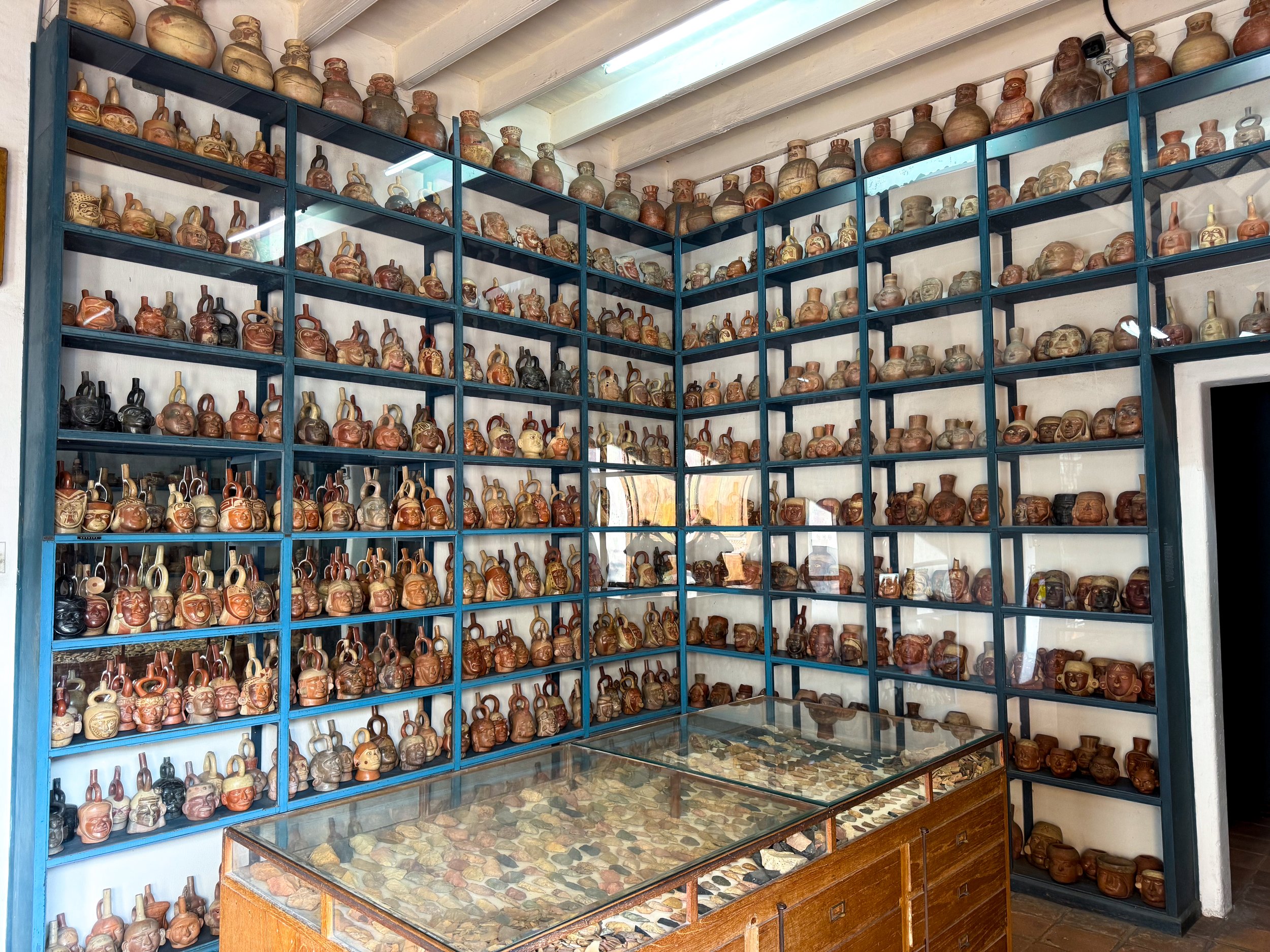
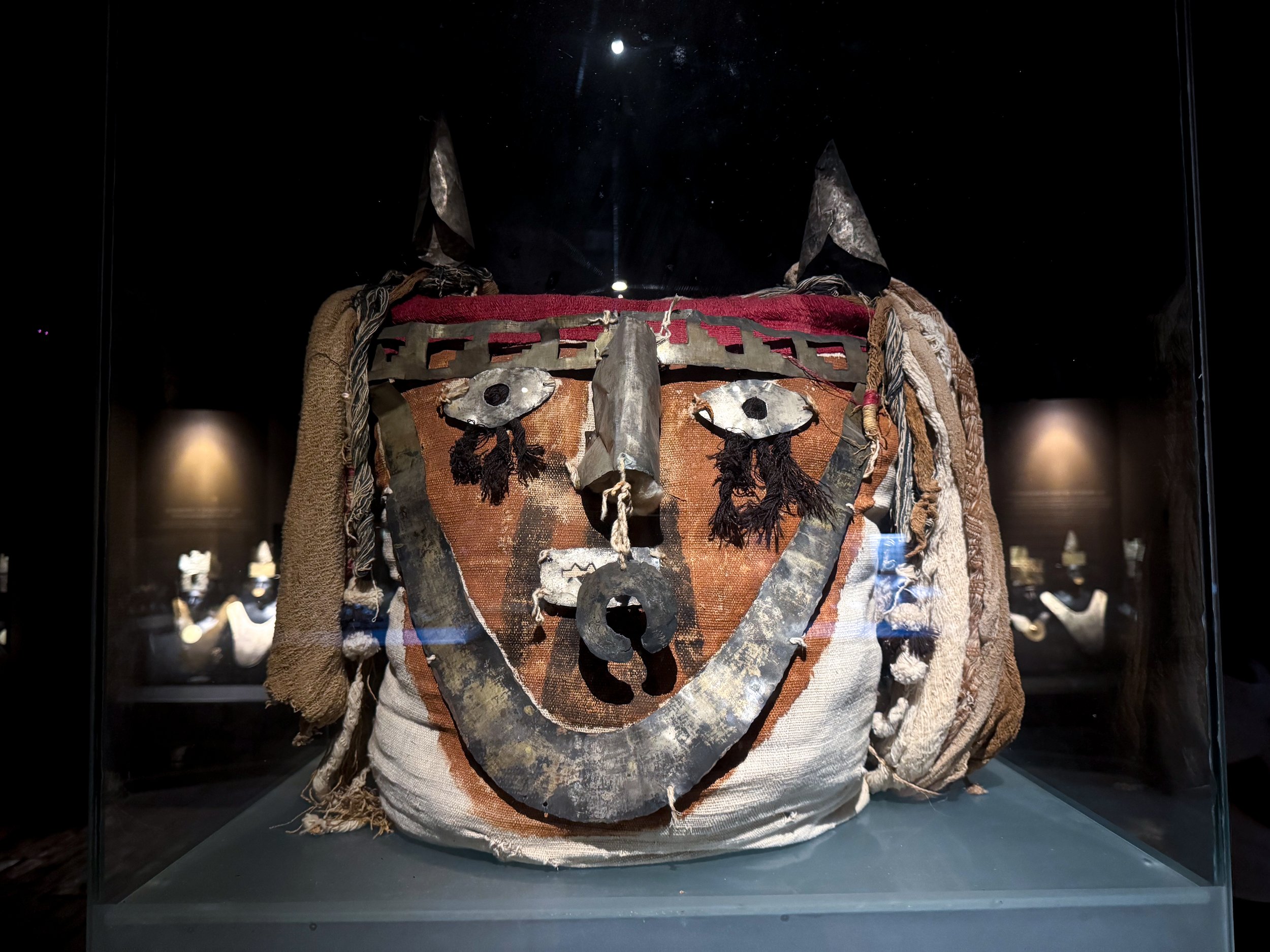
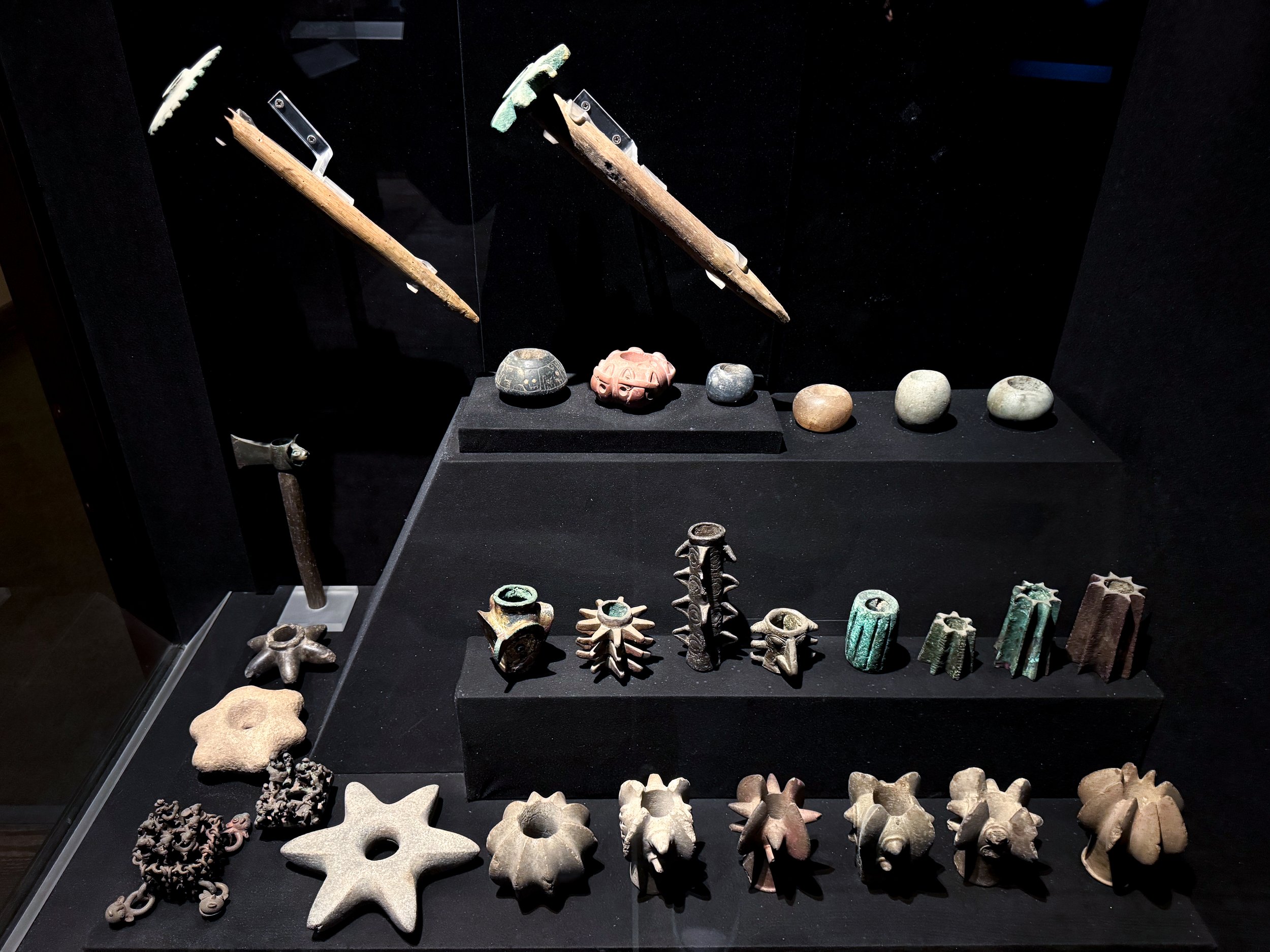
Larco Museum. An exquisite collection of Peruvian ceramics and artifacts dating back thousands of years until the arrival of the Europeans. The museum categorizes the ceramics by period and civilization, going into great detail about their design, manufacturing and cultural significance.
Other exhibits include one with erotic ceramics and visible storage room. In addition to ceramics, some of the most interesting artifacts are textiles used for record keeping, a tunic made from macaw feathers, mummified remains, precious jewelry and the the only complete royal funereally set with a golden mask, breast plate and headpiece.
Museo Oro del Perú y Armas del Mundo. A museum with gold and silver artifacts from past Peruvian civilization including jewelry, clothing, mugs, funeral offerings and carved stone weaponry. Some of the more fascinating artifacts are mummified remains, human skulls wearing ancient feathered headdresses, golden wall panels from the ancient city and gold plated blankets used by royals.
Fortaleza del Real Felipe. A historic stone military fortress with a pentagon shaped structure, round guard towers, walls lined with hundreds of cannons and a central courtyard still used by the military today. The two guard towers are the most impressive to visit. We explored their labyrinth of rounded tunnels, ramps and staircases leading to rooms, chambers and lookouts.
Where to Eat & Drink
Amankaya - Peruvian Food. A delectable seafood restaurant built within a house in Miramar neighborhood of Lima. We came here for the fresh ceviche, buttery seafood rice, flamed mixed seafood scallops and chilcano cocktails.
Coffeebrix. A cute cafe for artisan coffees, breakfast toasts, egg dishes and croissants.
Curayacu Tiki Bar - Barranco. Known as Peru’s first Tiki Bar, the mixologists at this hidden gem make inventive tiki drinks and the classics with Peruvian Rum and a theatrical performance sometimes including elaborate presentations, torched garnishing or a seafaring story. The bar is located in the basement in the Barranco neighborhood with tiki decor, a tropical ambience and one of a kind mugs.
En Su Punto. A seafood restaurant on a colorful street in Callao covered with umbrellas and banderas. We came here for their lunch specials and ordered the fried seafood chicheron and ceviche for 25 Soles and 2 Pisco sours for 25 Sols.
Getting Around Lima
By Uber. Getting to and from the airport or longer distances within the city is easiest by Uber.
On Foot. The neighborhoods of Borranco and Miraflores are very walkable. We explore both on foot, even walking between them.
Getting Around Peru
From Lima, it’s easy to get around the country by bus. During our past two trips to Peru, we took Perubus & Peru Hop.
Perubus. During our first trip to Peru, we used Perubus to travel between Lima, Pisco and Ica. Prices are extremely affordable, costing less than $10 for tickets between destinations with bus terminals in all three cities.
Peru Hop. The best way to get around Peru is by Peru Hop, a hop on hop off bus with destinations all across the coast from Lima, Paracas, Huacachina and Nazca into the Andes to Arequipa, Cusco and Puno (Lake Titicaca) then onward to Copacabana and La Paz, Bolivia. It is by far the best way to see Peru, allowing us to build our own itinerary, stopping at as many destinations along the way for as long as we would like.
Paracas
Paracas is fishing village and backpackers haven along the Pacific coast known for its marine nature reserves, sprawling desert sand dunes and a large geoglyph called the Candelabra.
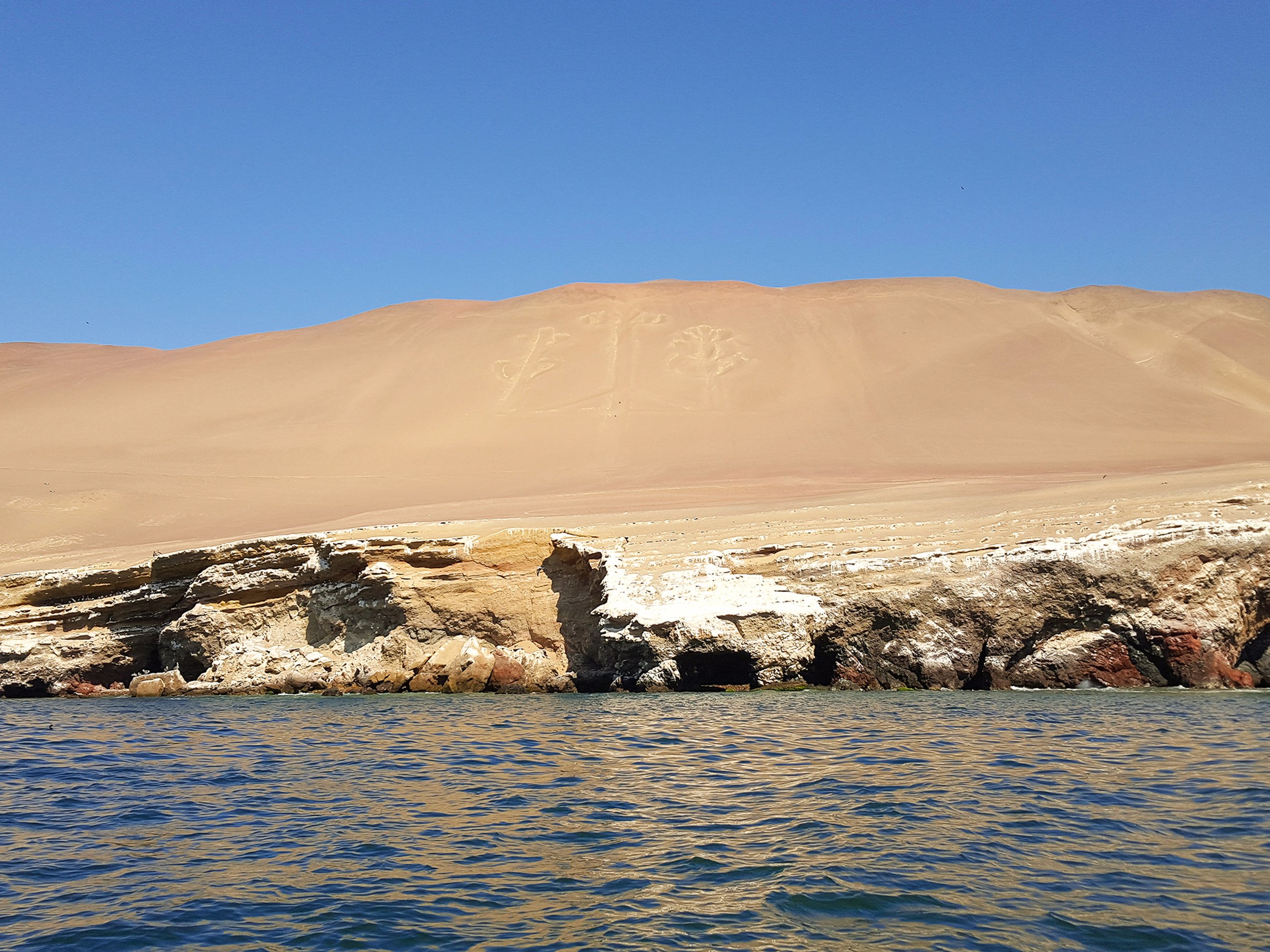
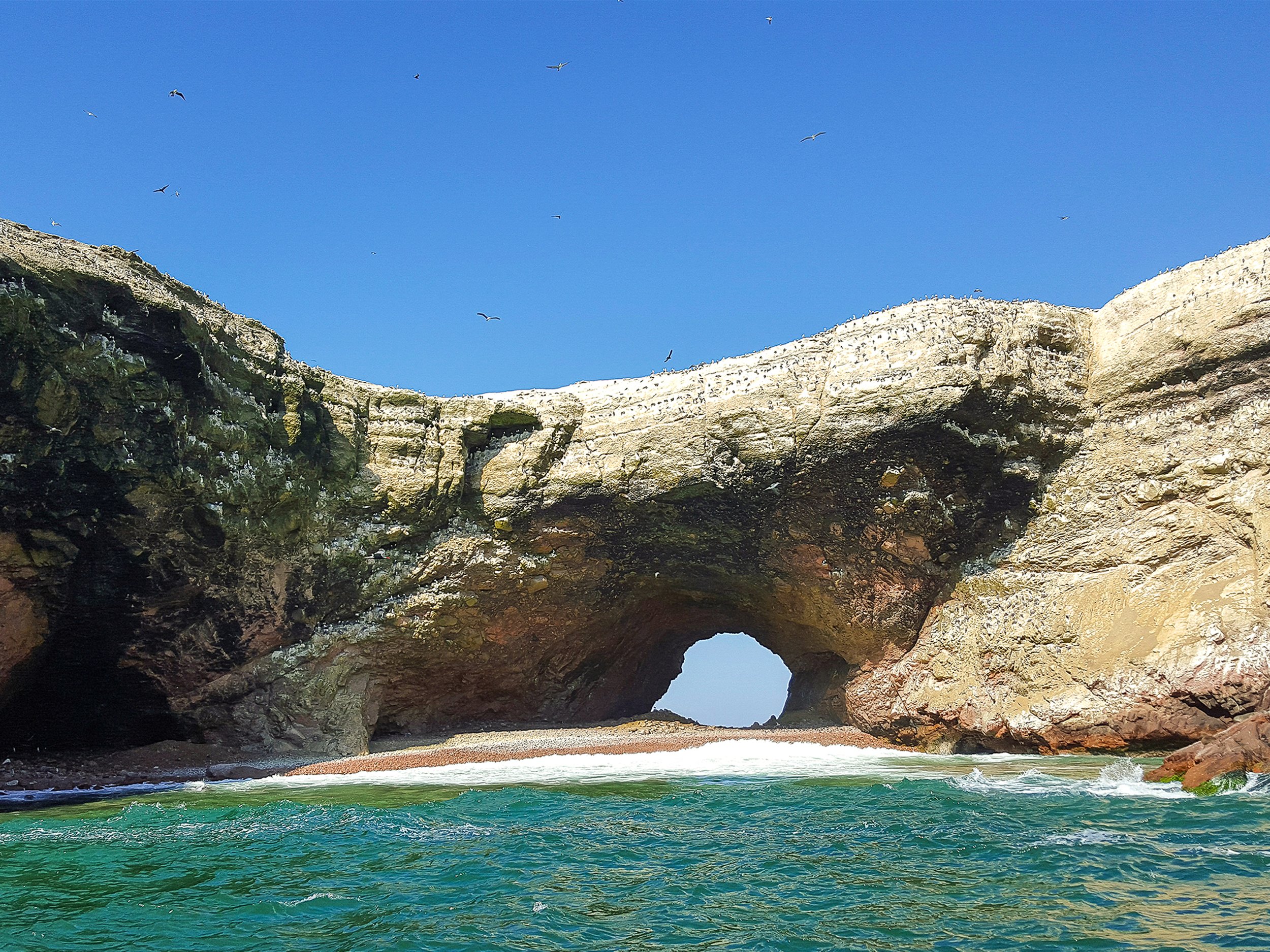
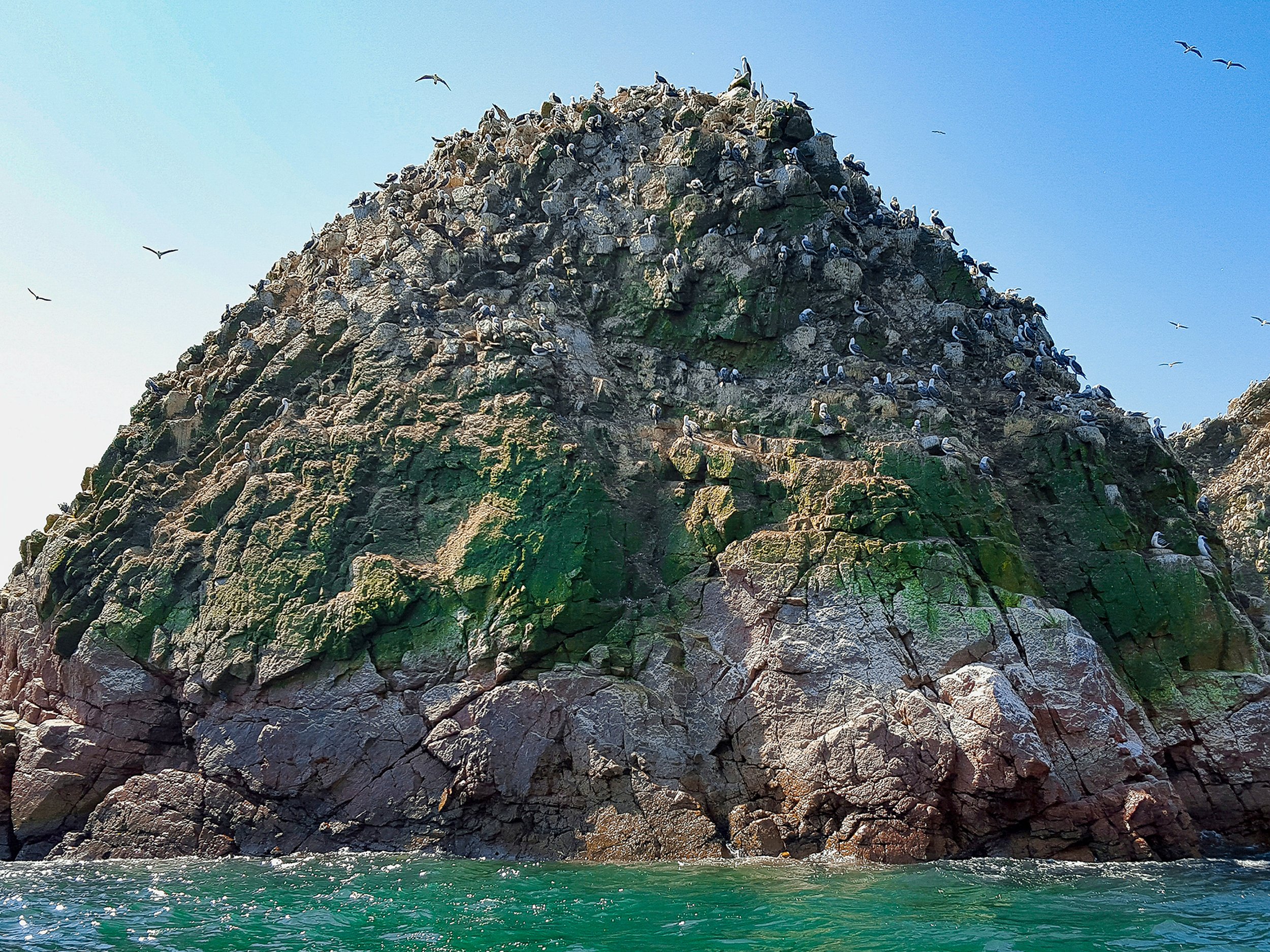
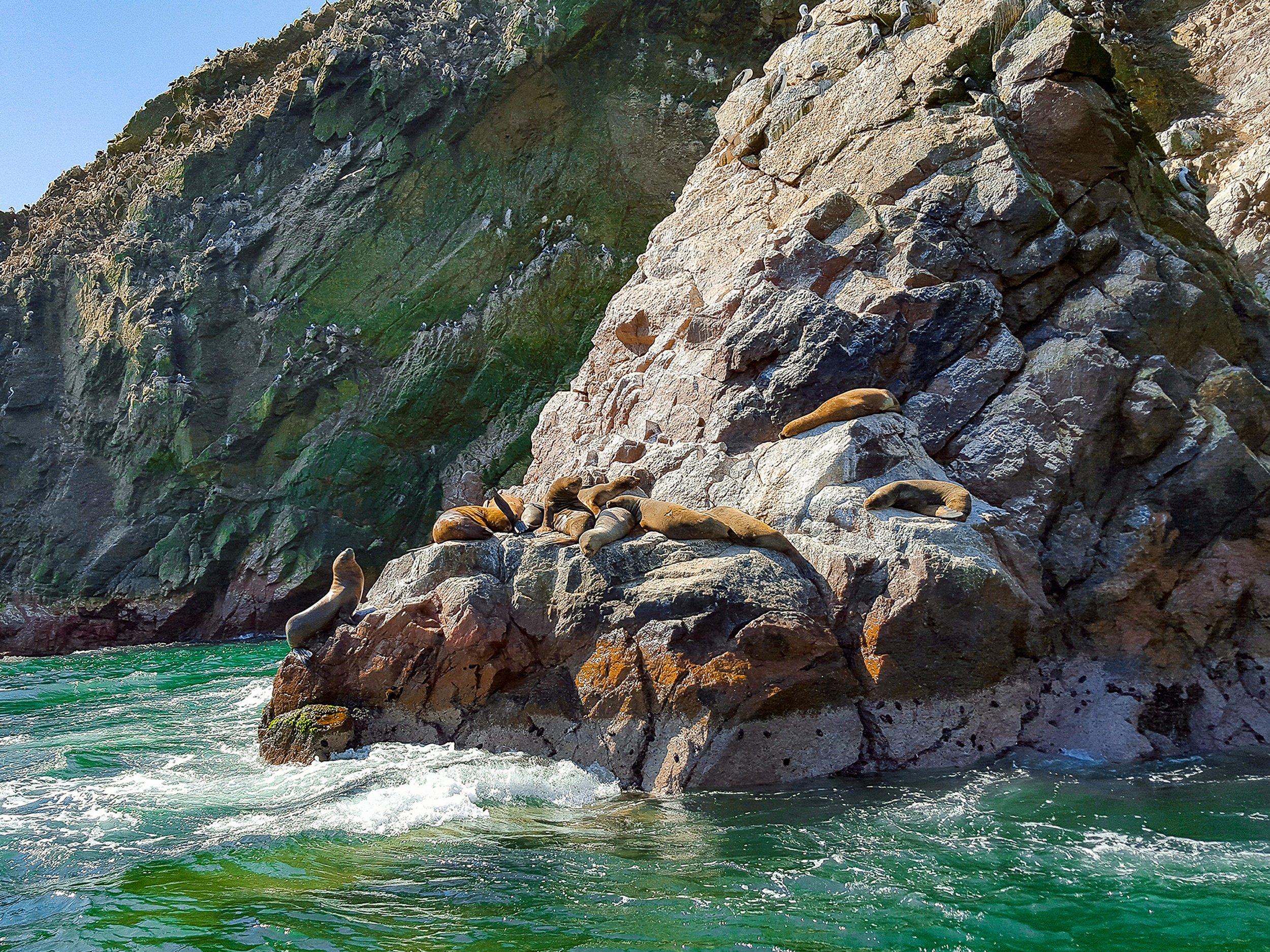
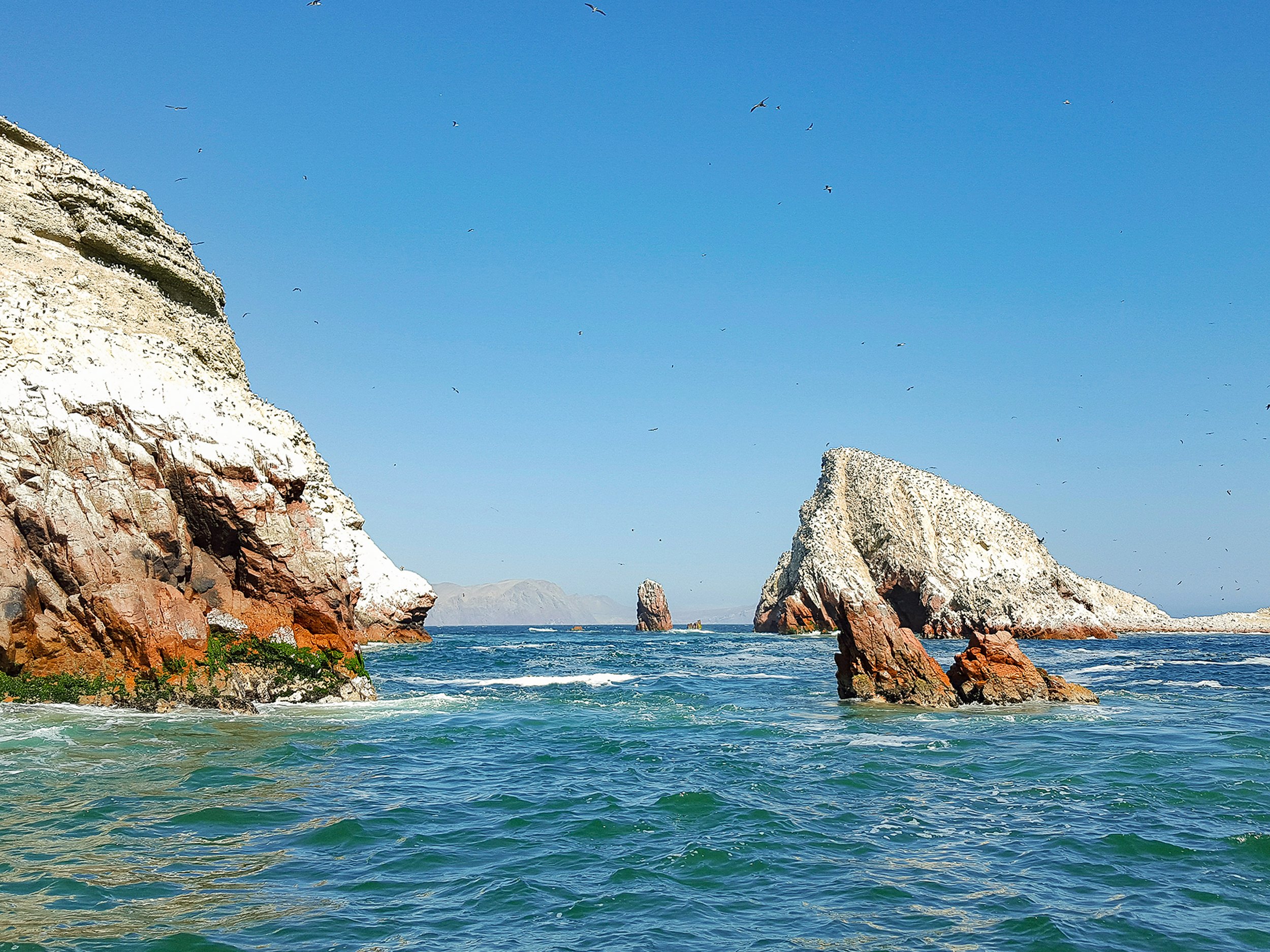
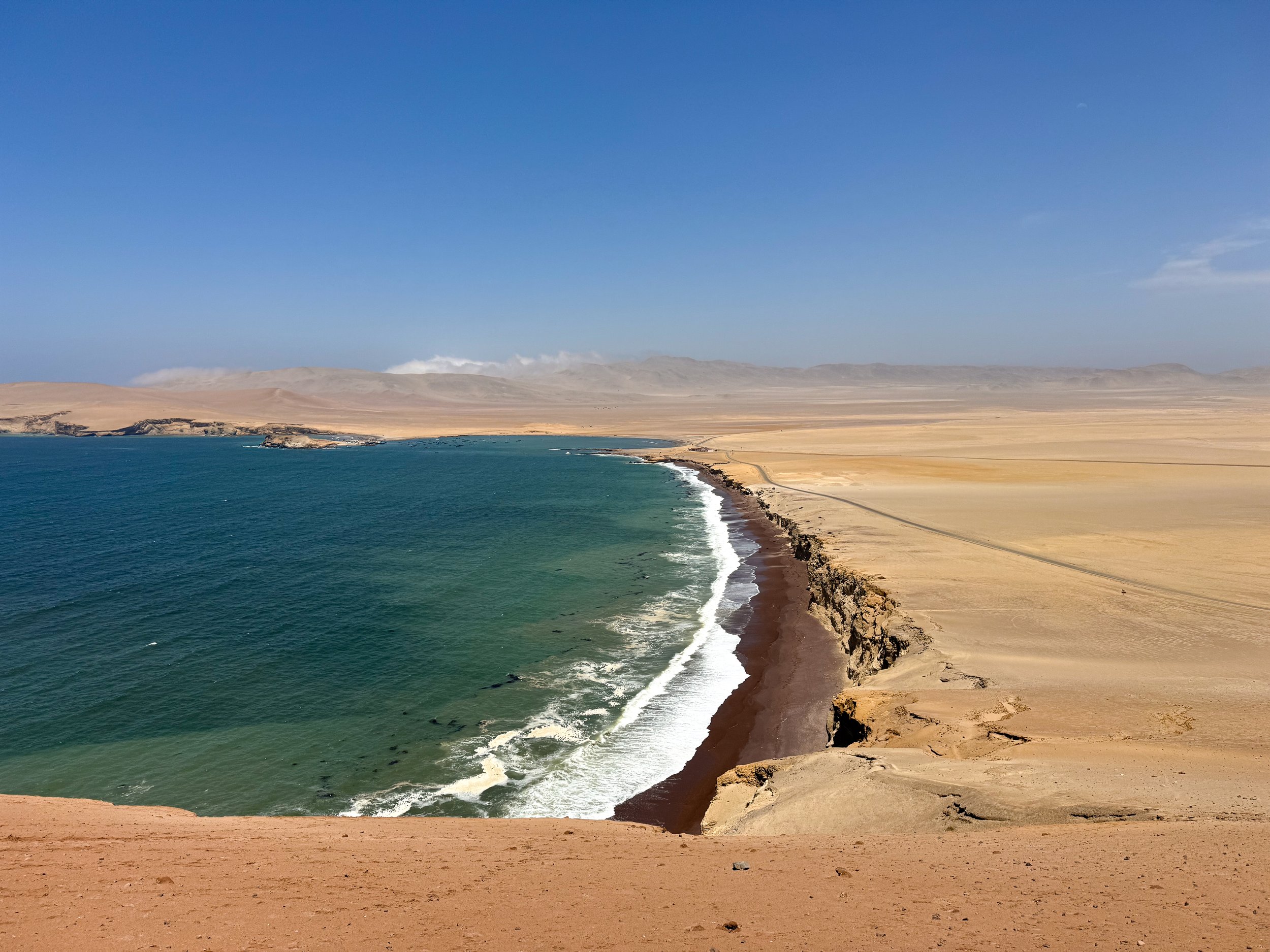
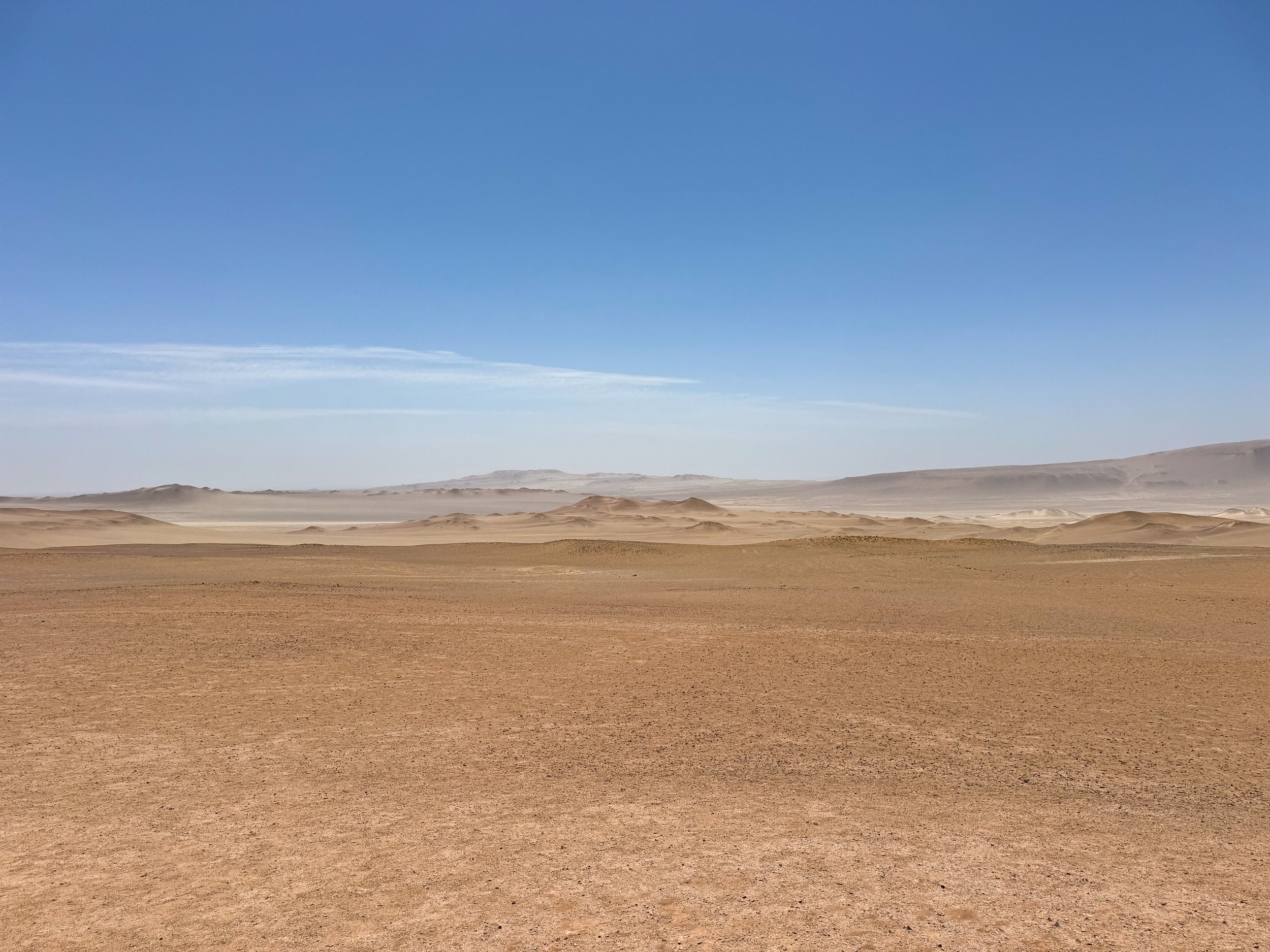
Sights
Paracas Harbor. The harbor is dotted with fishing boats bringing the days catch to the waterfront restaurants lining the beach in town. Its city center is surrounded by hostels, tour companies and more restaurants bars. We at lunch at Restaurant Tipico Bahia, a restaurant on the waterfront serving local Peruvian dishes. We ordered the ceviche, Jallea (mixed fried seafood) and Cusquenas.
Reserva Nacional de Paracas. A national park in Paracas with a vast marine and desert reserve home to species of penguin, seabirds and sea lions. We explored The Ballistas Islands by boat, stopping at multiple locations to see penguins nesting, a large sea lions mating, flocks of birds feeding and a sea arch. Along the way, we passed the Paracas Candelabra, a massive geoglyph carved into the side of the mountain by an ancient civilization dating back 2,000 years. On land, we visited Playa Roja, a deep red sand beach along the cold pacific waters. Above the beach, we stopped at Mirador Istmo II, a lookout with views of the shoreline and sprawling yellow sand desert.
The Paracas Desert. A vast desert stretching from the Pacific Coast to the Andes Mountains with a seemingly endless horizon of massive sand dunes. In town, there are a number of guides offering tours into the desert. We booked with one that took us on a wild dune ride that traversed the massive valleys of sand. Half way through the tour, we stopped to try sand boarding for the first time. After a several attempts, mostly involving tumbling down the dune and crawling back to the top, we eventually gave up. Afterwards, we stuck around late enough to watch the sunset.
Getting to Paracas
The best way to visit Paracas is by Peru Bus or Peru Hop. Plan to arrive by mid morning to get to the Ballestas Islands. There are many speedboat companies along the harbor that offer 2 to 3 hour tours for less than $20 per person. Prices and times are comparable for Dune Tours.
Pisco
Home of Peru’s national drink, the Pisco Sour. Pisco is a spirt fermented from grapes and distilled in large copper basins. While staying in town with our friends’ relatives, we drank homemade Pisco and watched Peruvian late night television. The town is hyper local with a central square, very few travelers and tuk tuk taxis racing down the dusty streets.
Here is a great recipe for a Pisco Sour:
2 oz Pisco
3/4 oz fresh lime juice
1 oz simple syrup
1 egg white
Angostura bitters
Shake all ingredients vigorously for about 30 seconds, then add ice and shake for at least another 15 seconds. Strain into a chilled glass and garnish the frothy top with a few dashes of the bitters.

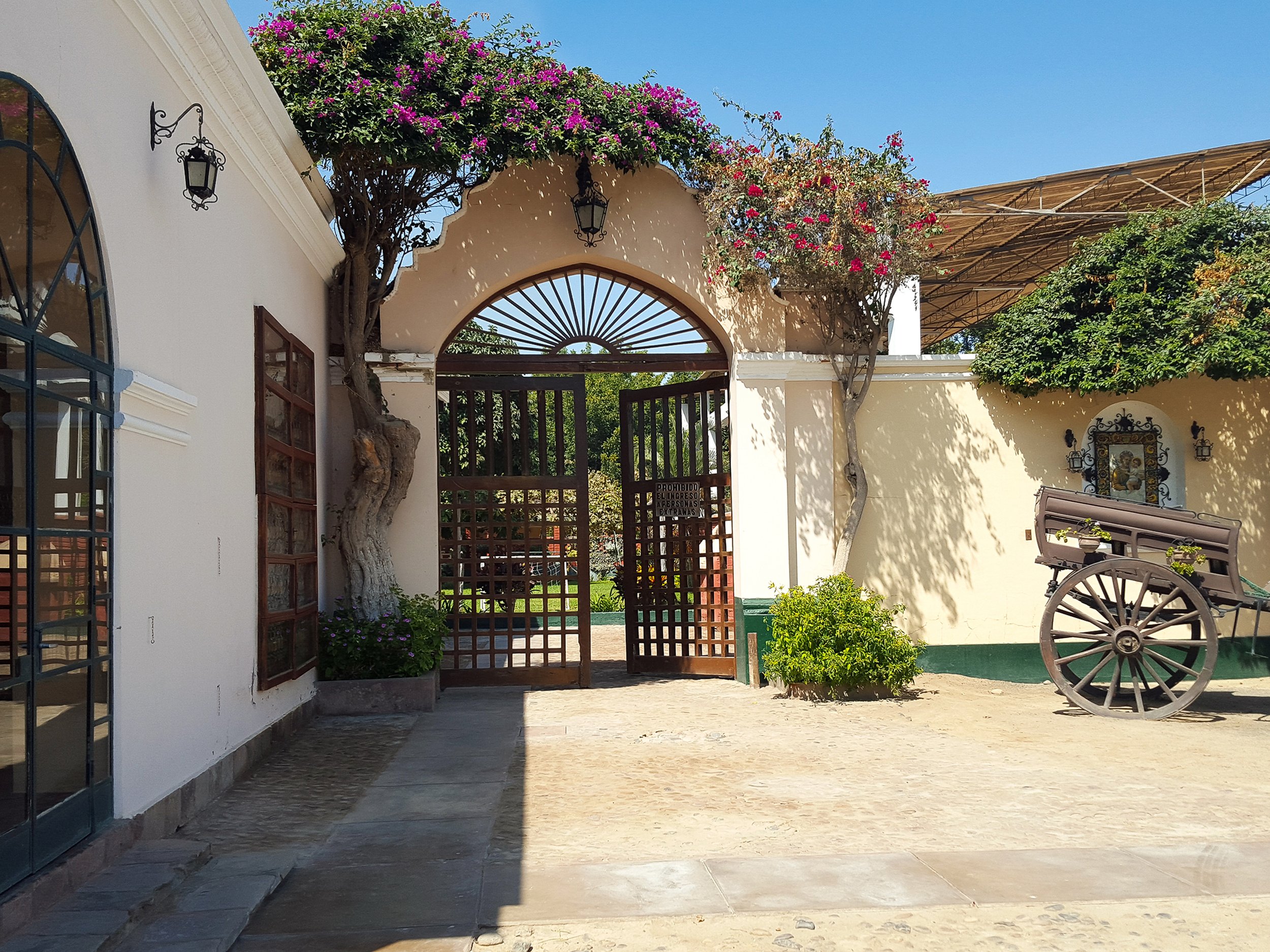
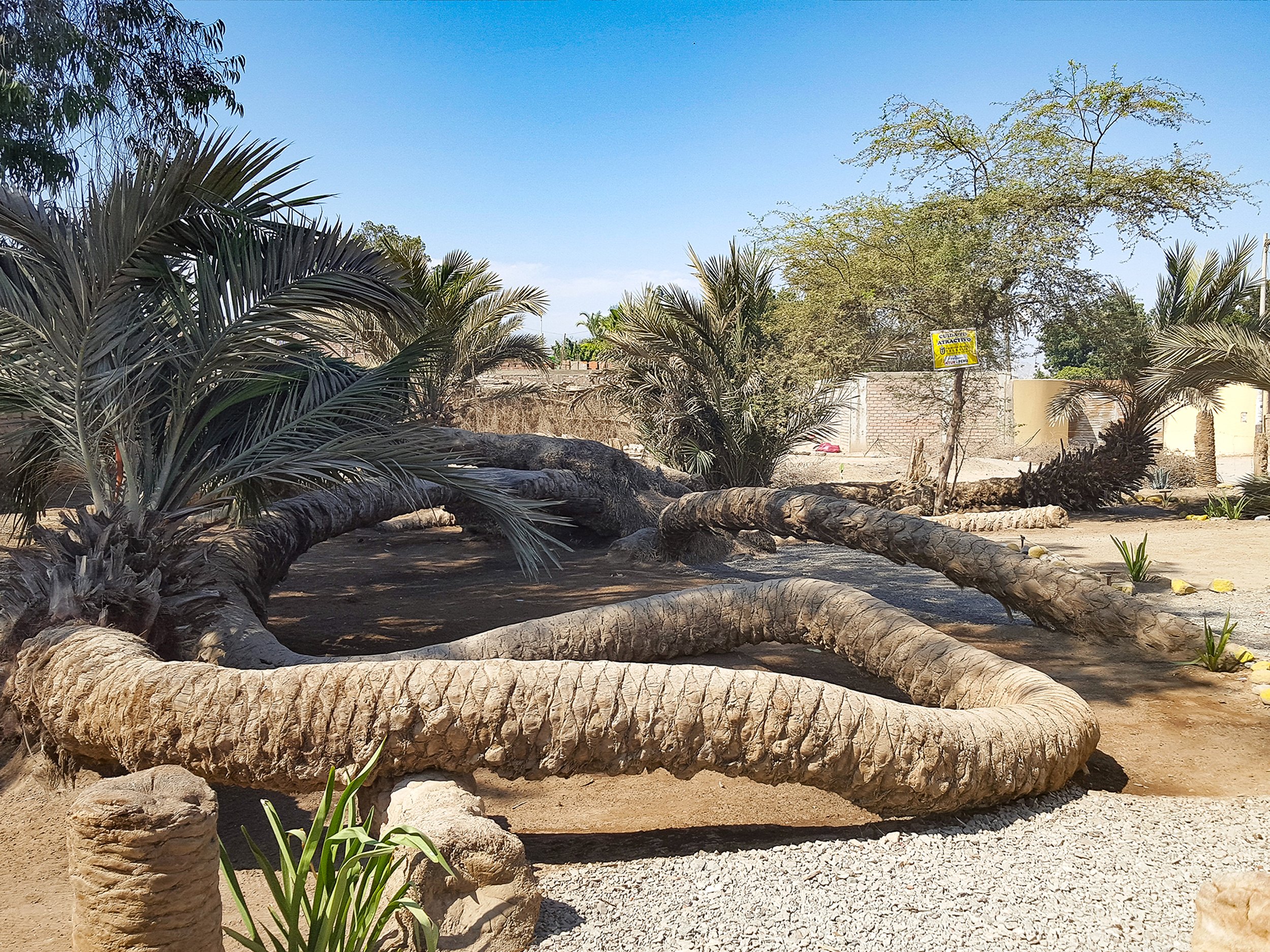
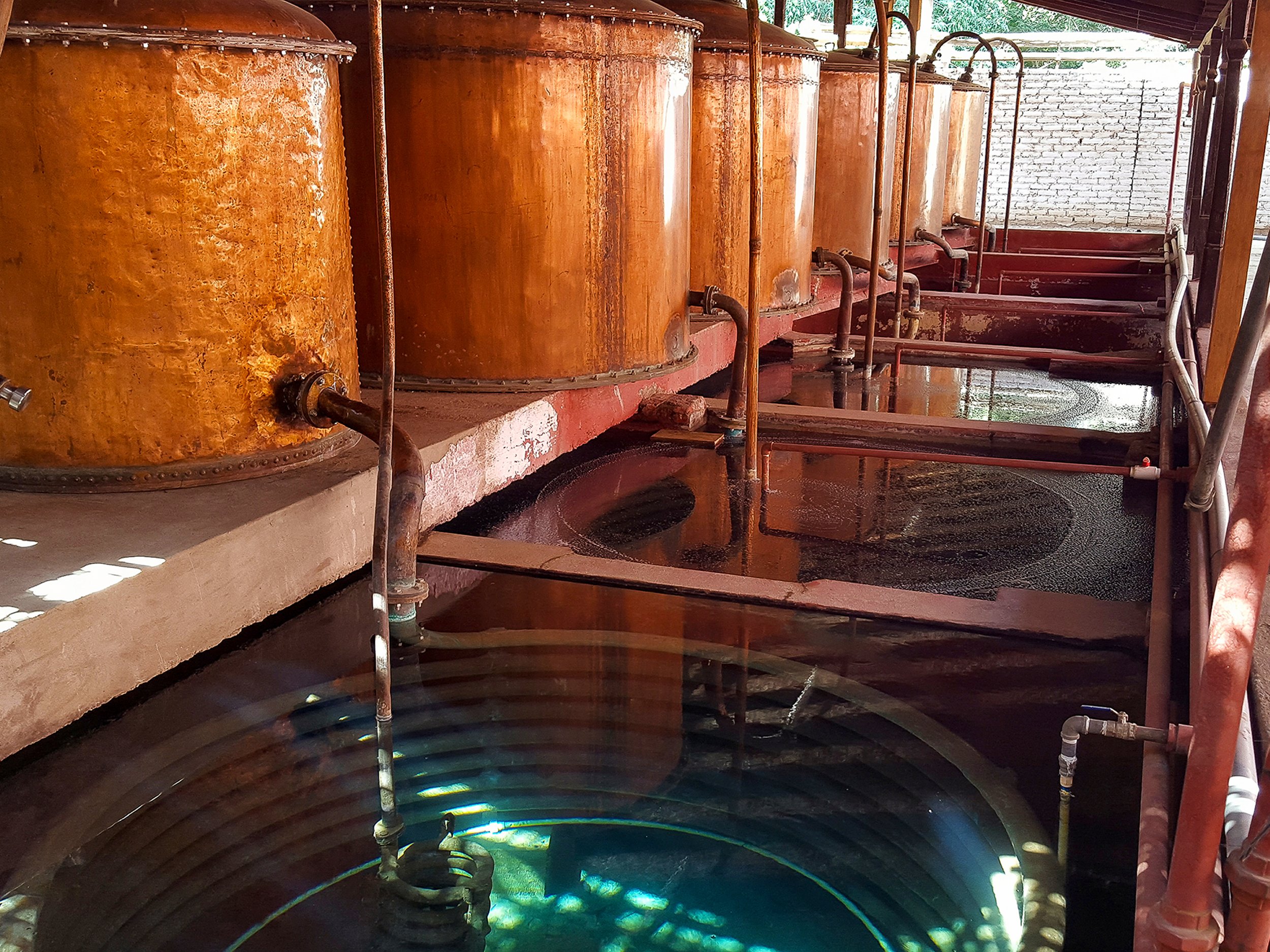
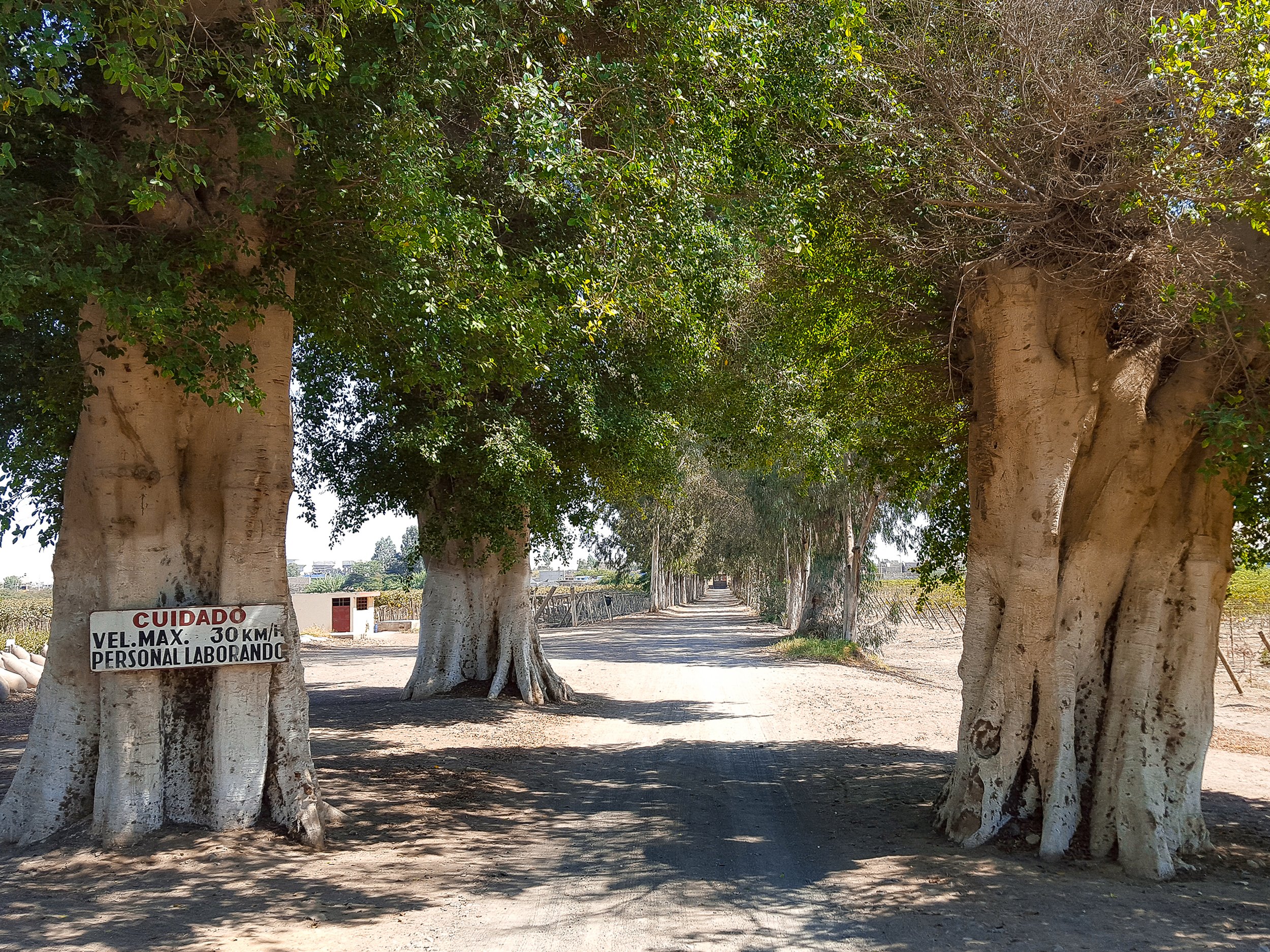
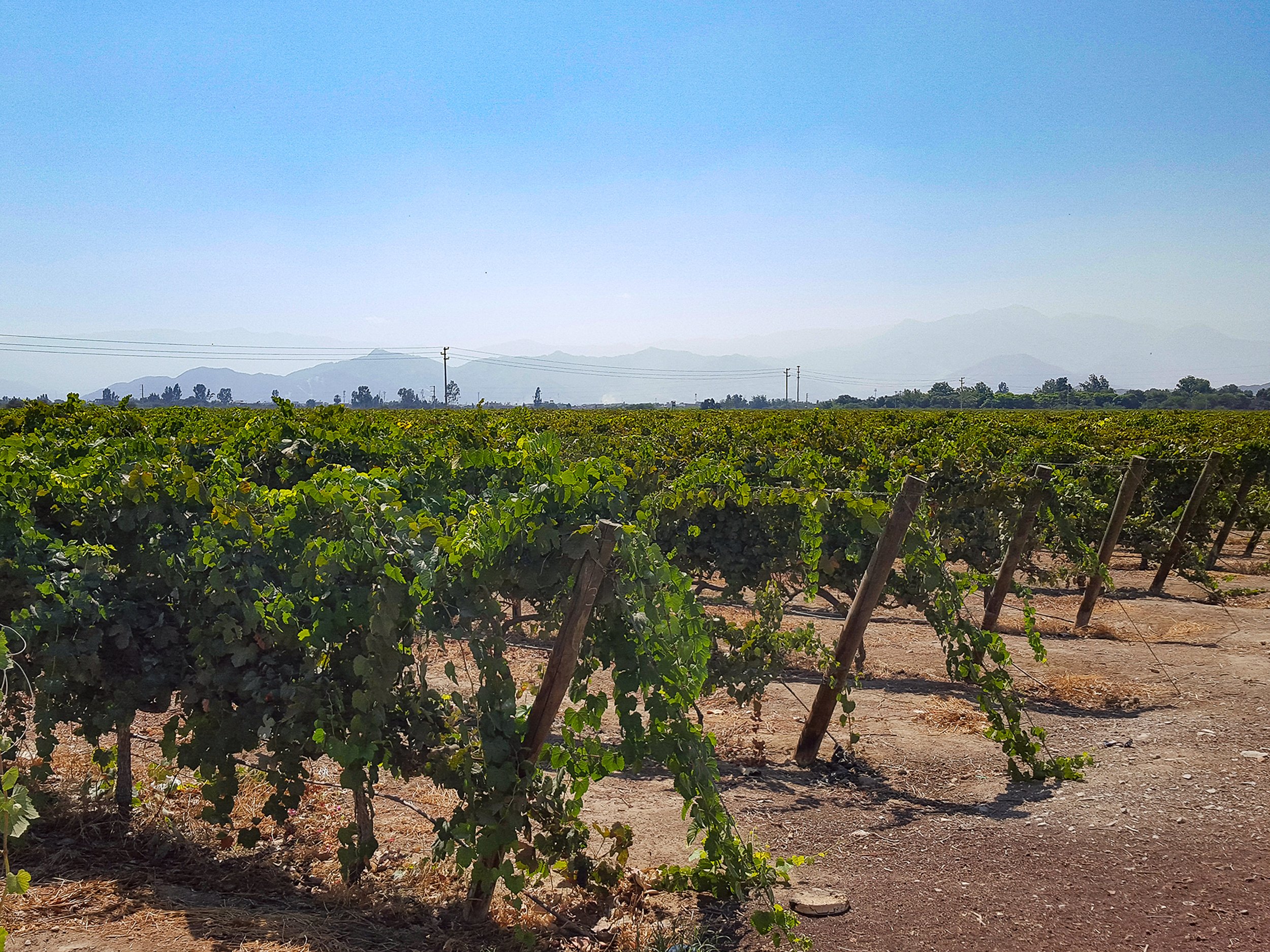
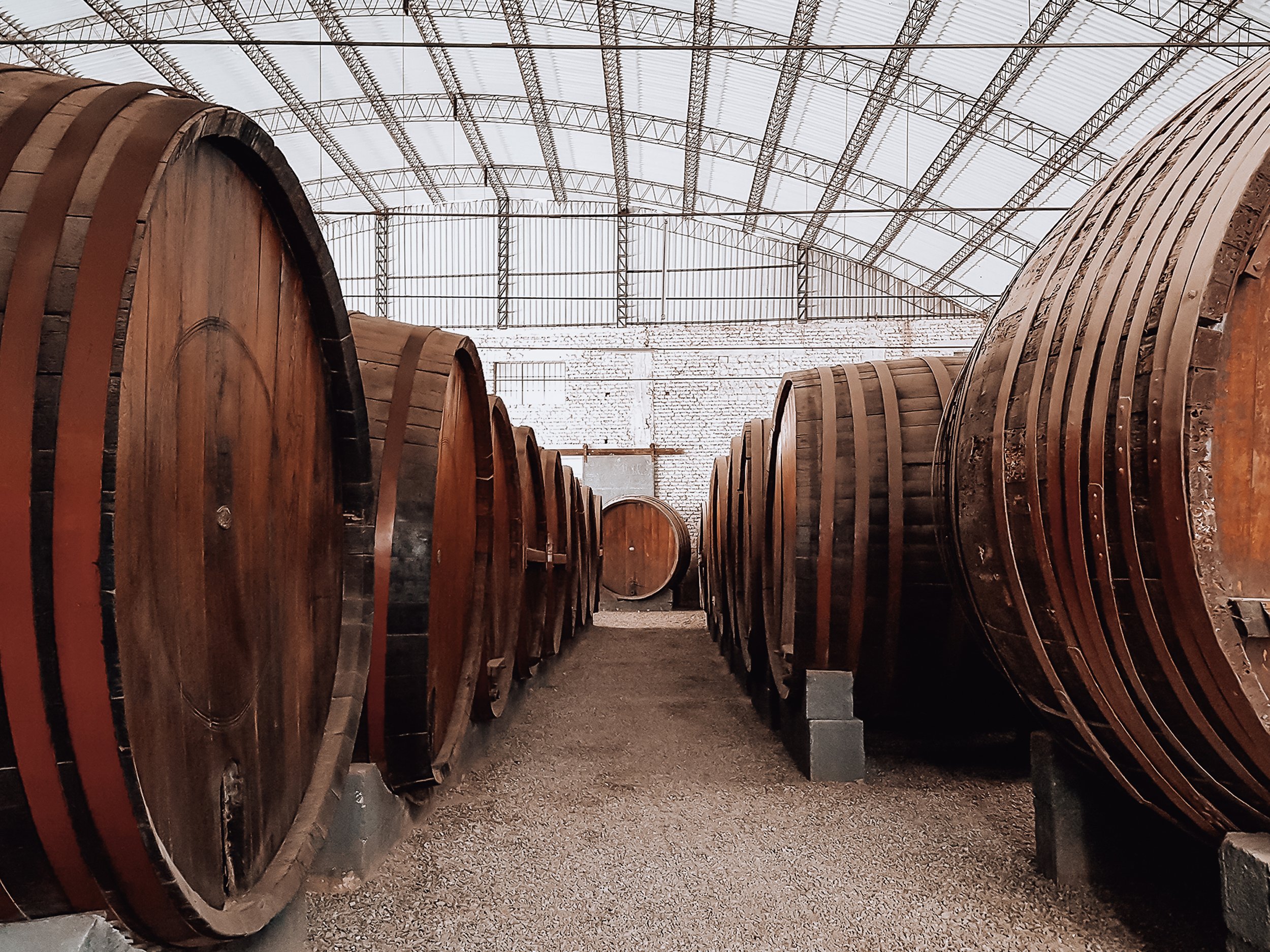
Ica
Ica is a region of the Peruvian desert at the base of the Andes Mountains with wine vineyards, Pisco distilleries, a desert oasis and nature reserves.
Peruvian Wines & Vineyards
Though Peru is not widely known for its wines, many incredible vintages come out of the country’s Ica Valley. During our 3 week in Peru, we sampled multiple wines, piscos and visited a couple of vineyards
Bodegas Vista Alegre. One of Peru’s largest and oldest vineyards and Pisco distilleries. Rows of grape vines line the fields extending towards the edge of the Andes mountains range. We learned about how the grapes are harvested, toured the facilities where they are fermented, distilled and bottled before getting to enjoy some for ourselves.
Nietto Vineyard. A vineyard and Pisco distillery in Ica. We stopped here on the Peru Hop bus and sampled at least a dozen wines and Piscos before enjoying a lunch with our guide. The atmosphere made for a lively and memorable experience!
Vittoria Reserva Malbec, Valle de Ica, Peru. A flavorful, full bodied and dry red wine with rich fruity notes.
Intipalka Vino Cabernet Sauvignon Syrah Réserva, Valle de Sol, Peru. An easy drinking mid to full bodied and dry red wine.
Intipalka Reserva de Familie Malbec, Bakke de Ica, Peru. A flavorful, dry and full bodied red wine.
Tacama Gran Tinto Trea Cepas Malbec, Petit Verdot & Tannat. A popular mid bodied and dry Peruvian red wine sold across the country made from a blend of Malbec and Tennat.
Tacama Gran Blanco. A popular white wine sold across the country with a light body with a dry and stoney flavor.
Getting Around Ica
By Taxi. The best way to tour Ica is to hire a taxi driver for the day or afternoon. Many of them will bring you to various sights, recommend places to eat and wait for you while you explore. The cost will depend on how long you hire them for and what you negotiate. In our instance, we hired a taxi for 4 hours and it cost $30.
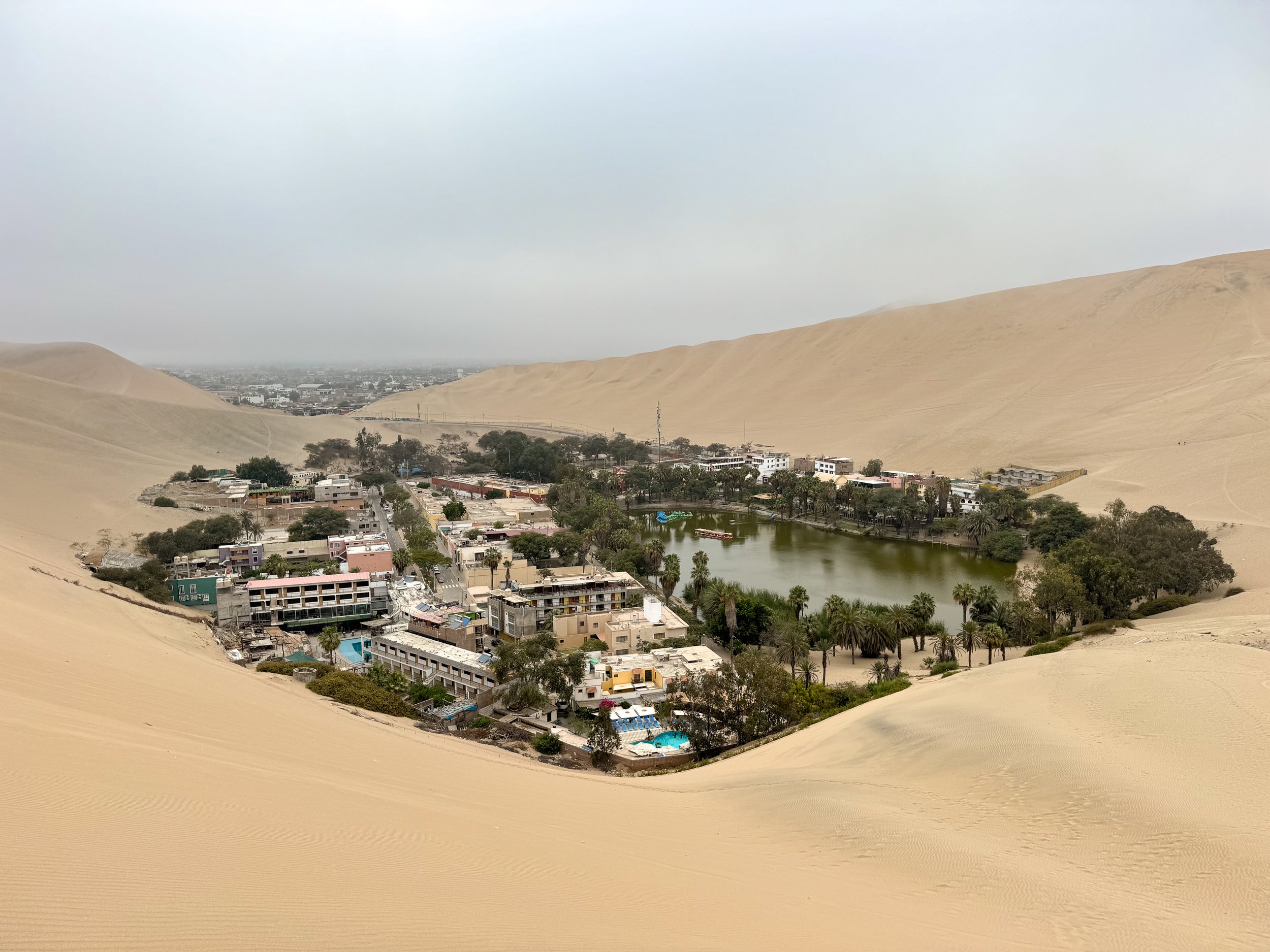
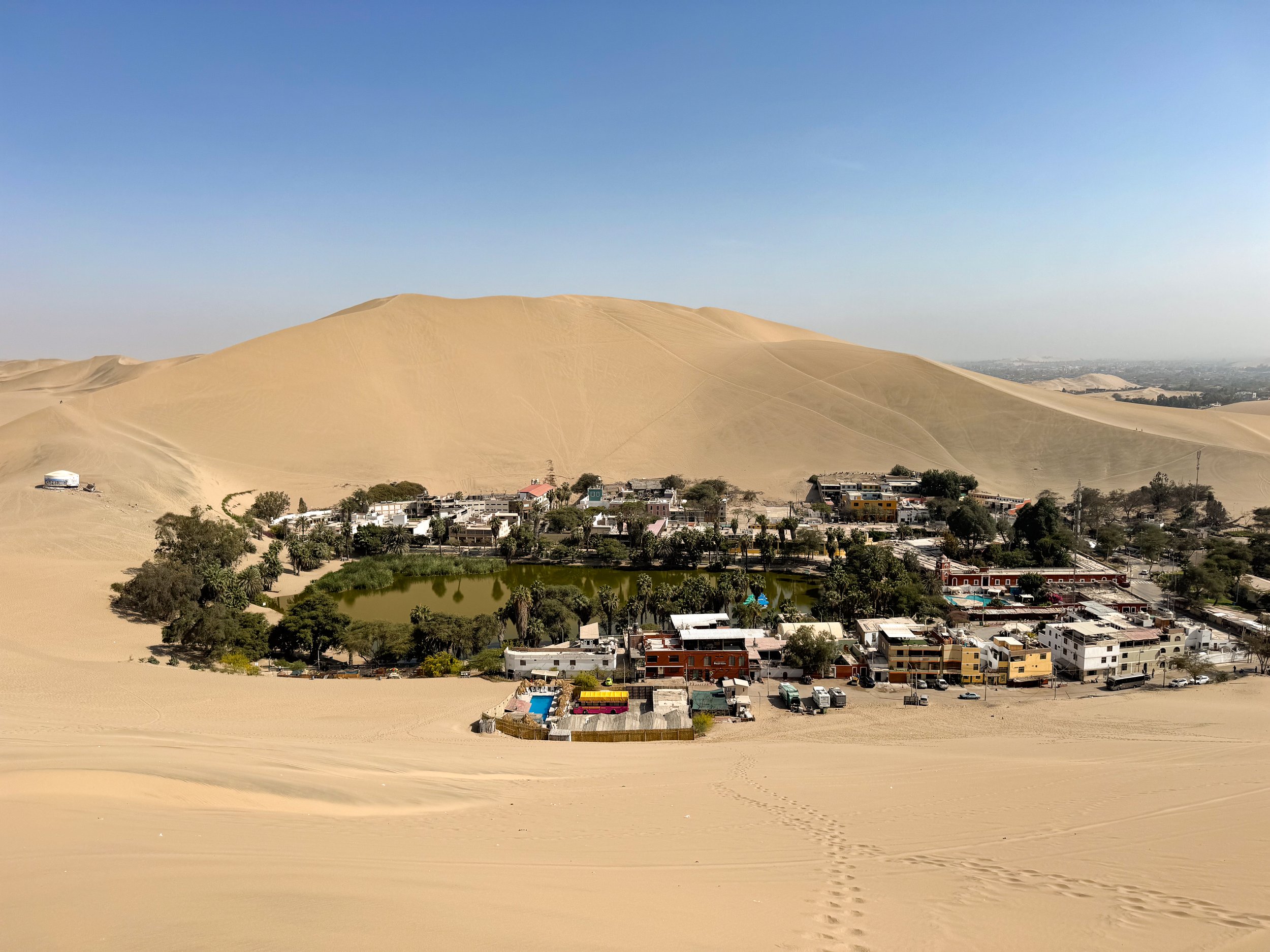
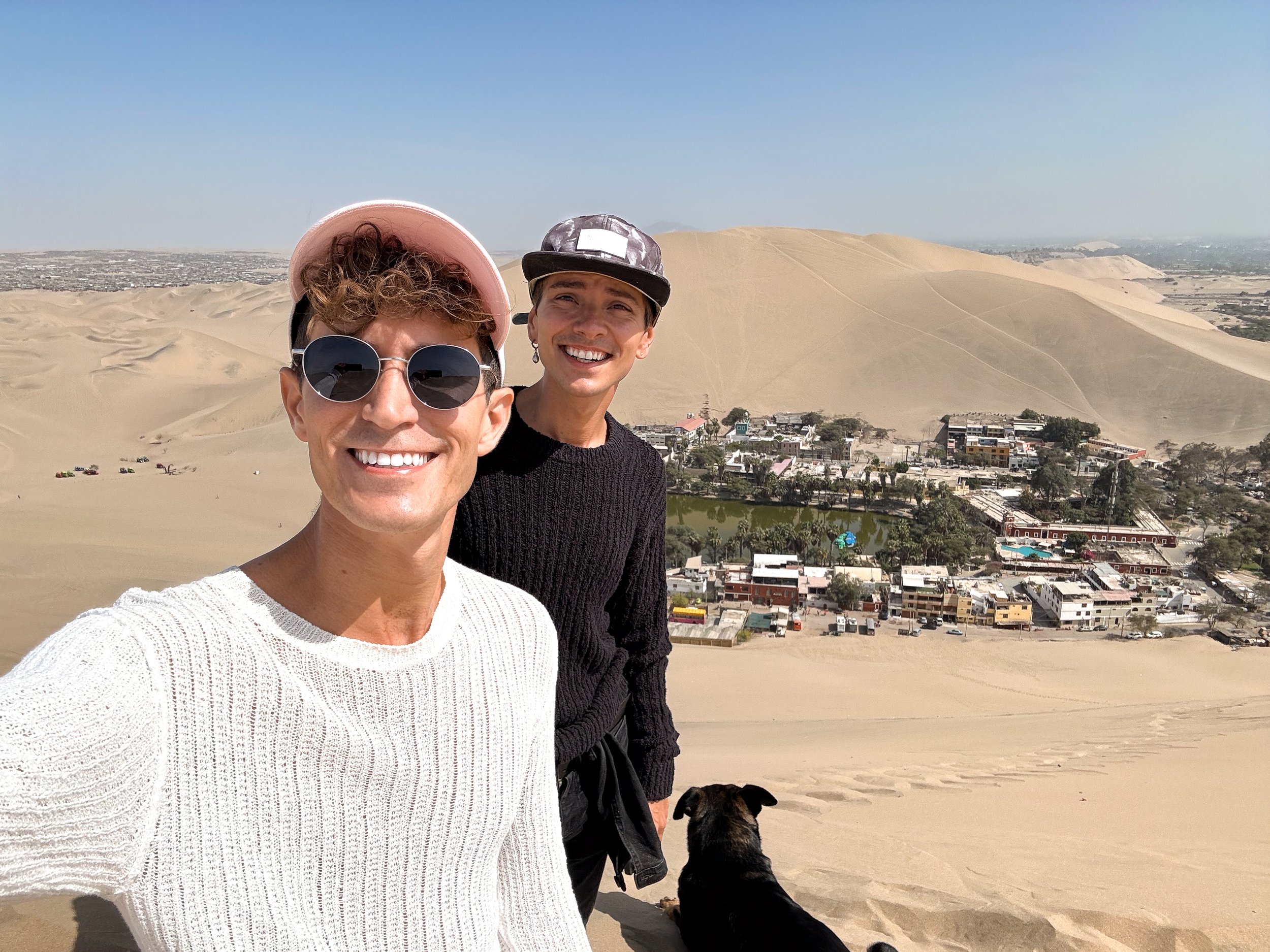
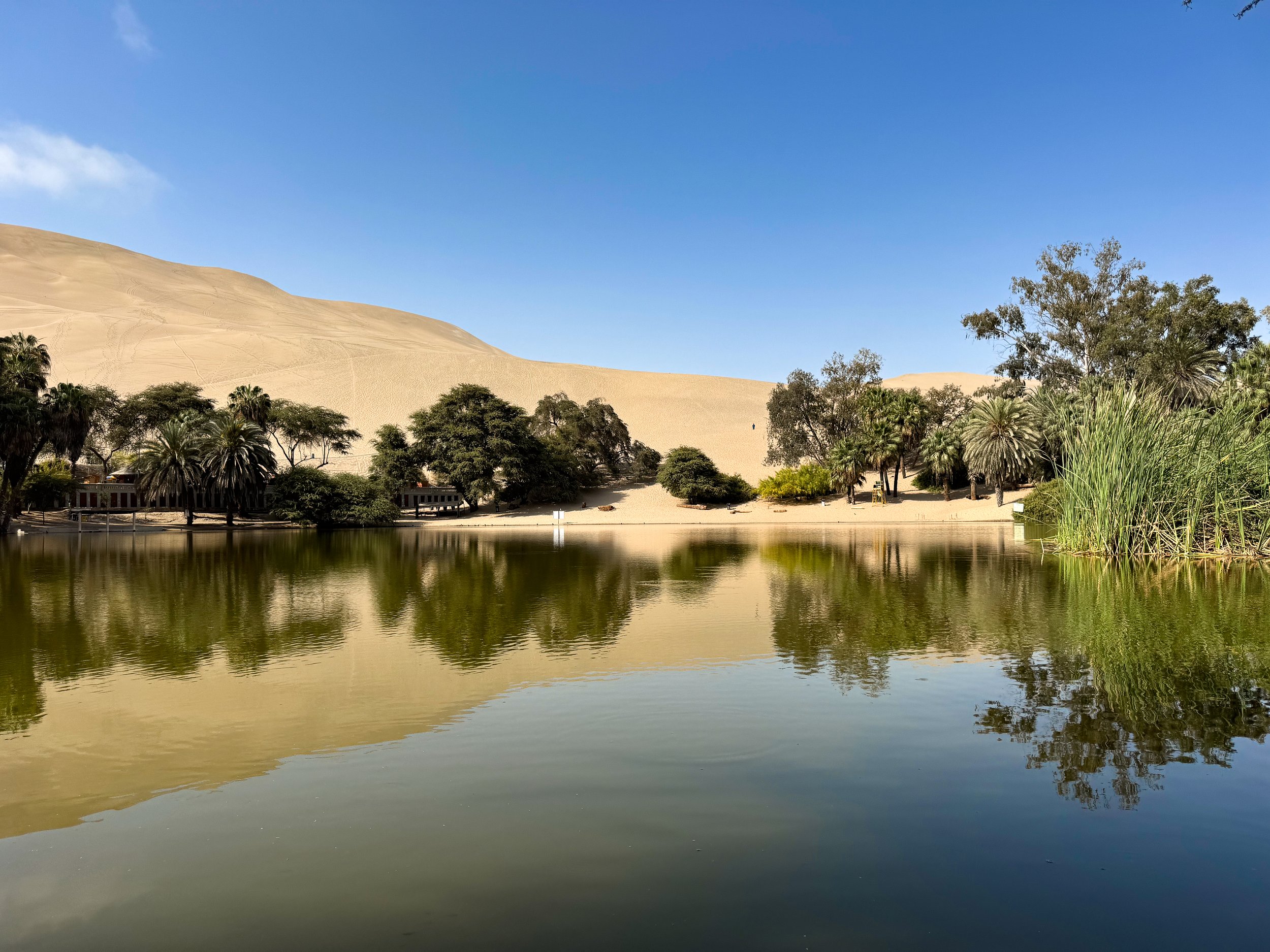
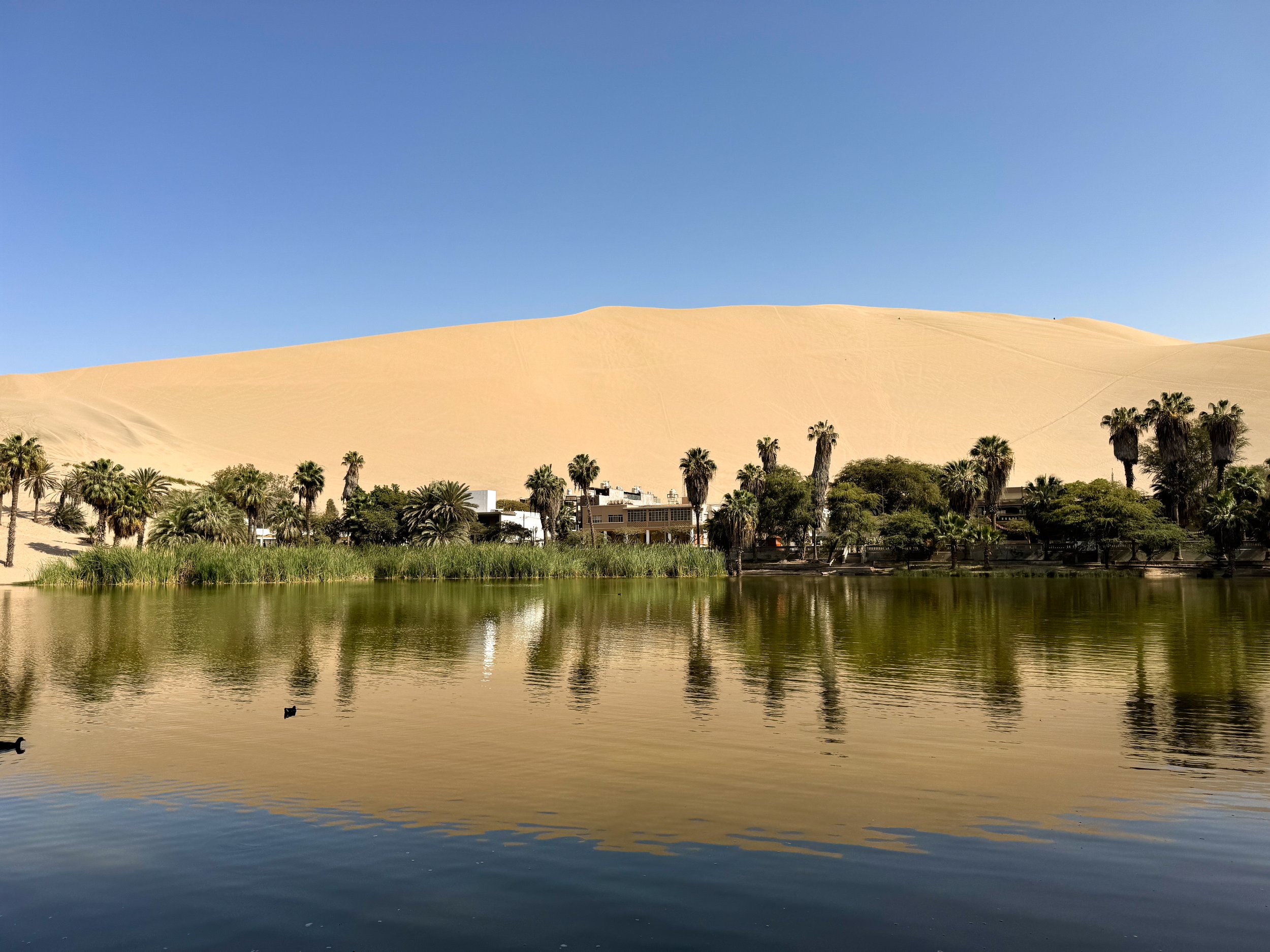
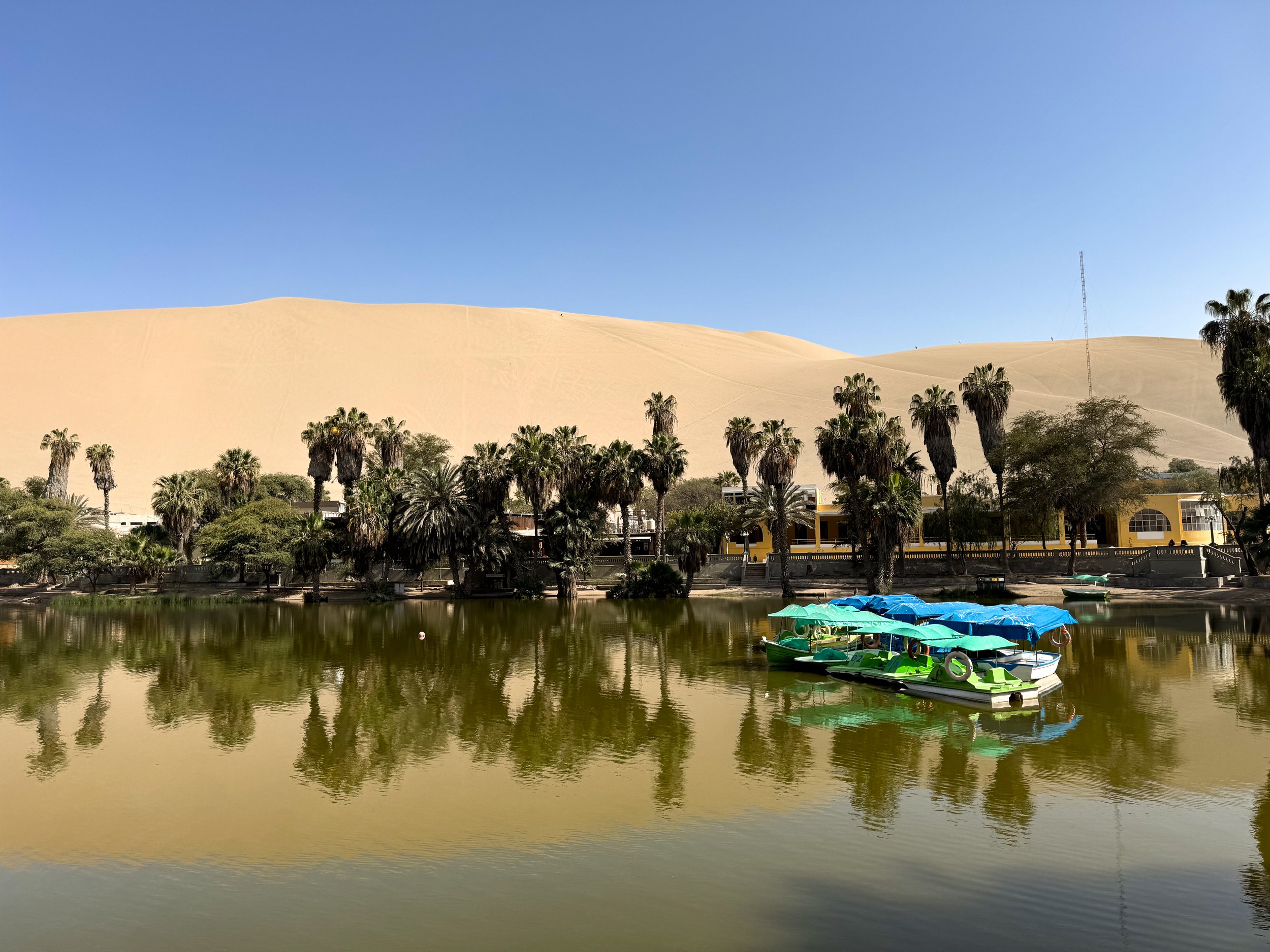
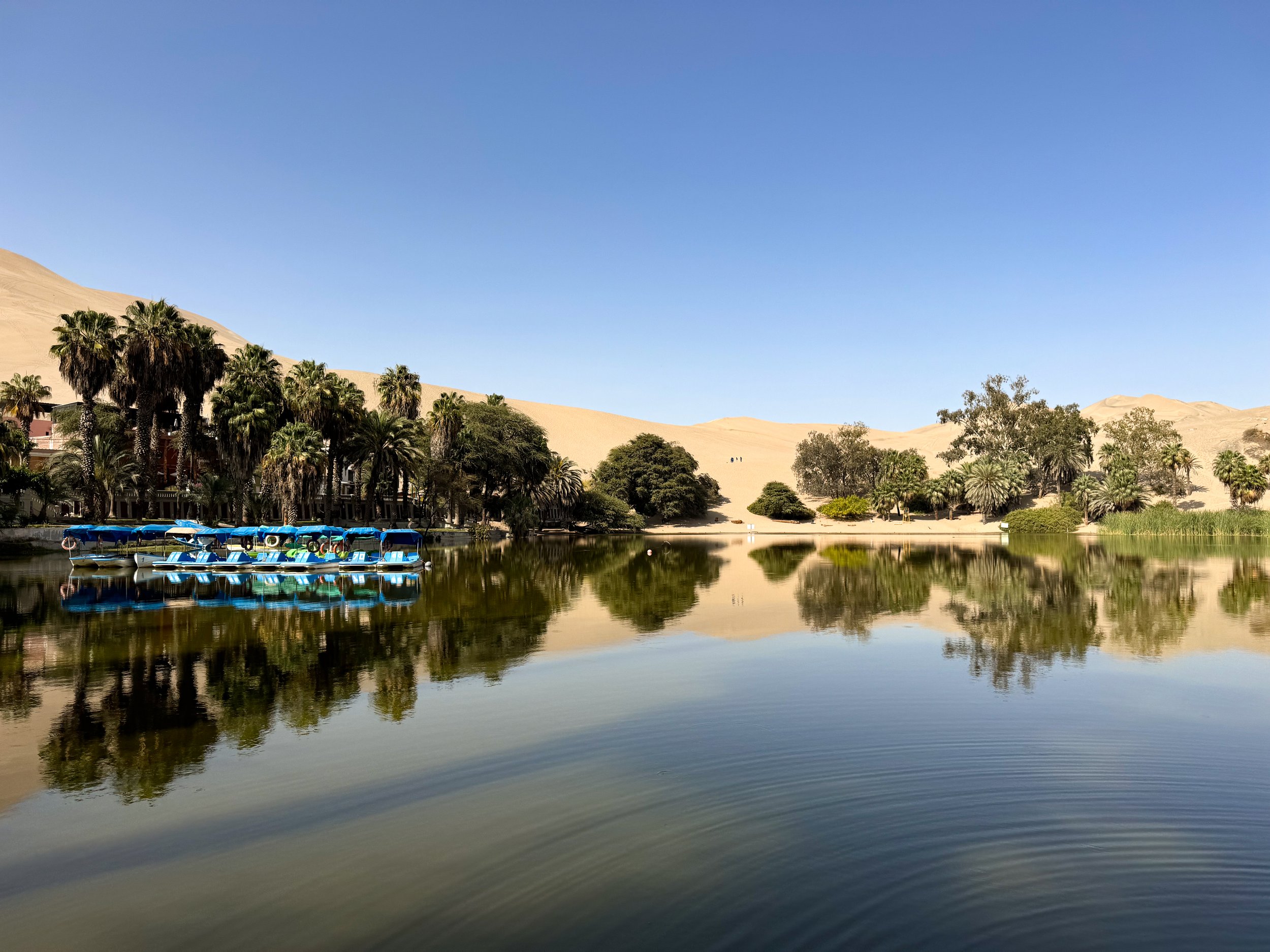
Huacachina
The Desert Oasis. Huacachina is a picturesque desert oasis hidden between monstrous sand dunes home to a tiny lake surrounded by palm trees, hostels, restaurants and bars. The town is popular with backpackers and desert activities like dune buggy rides & sand boarding.
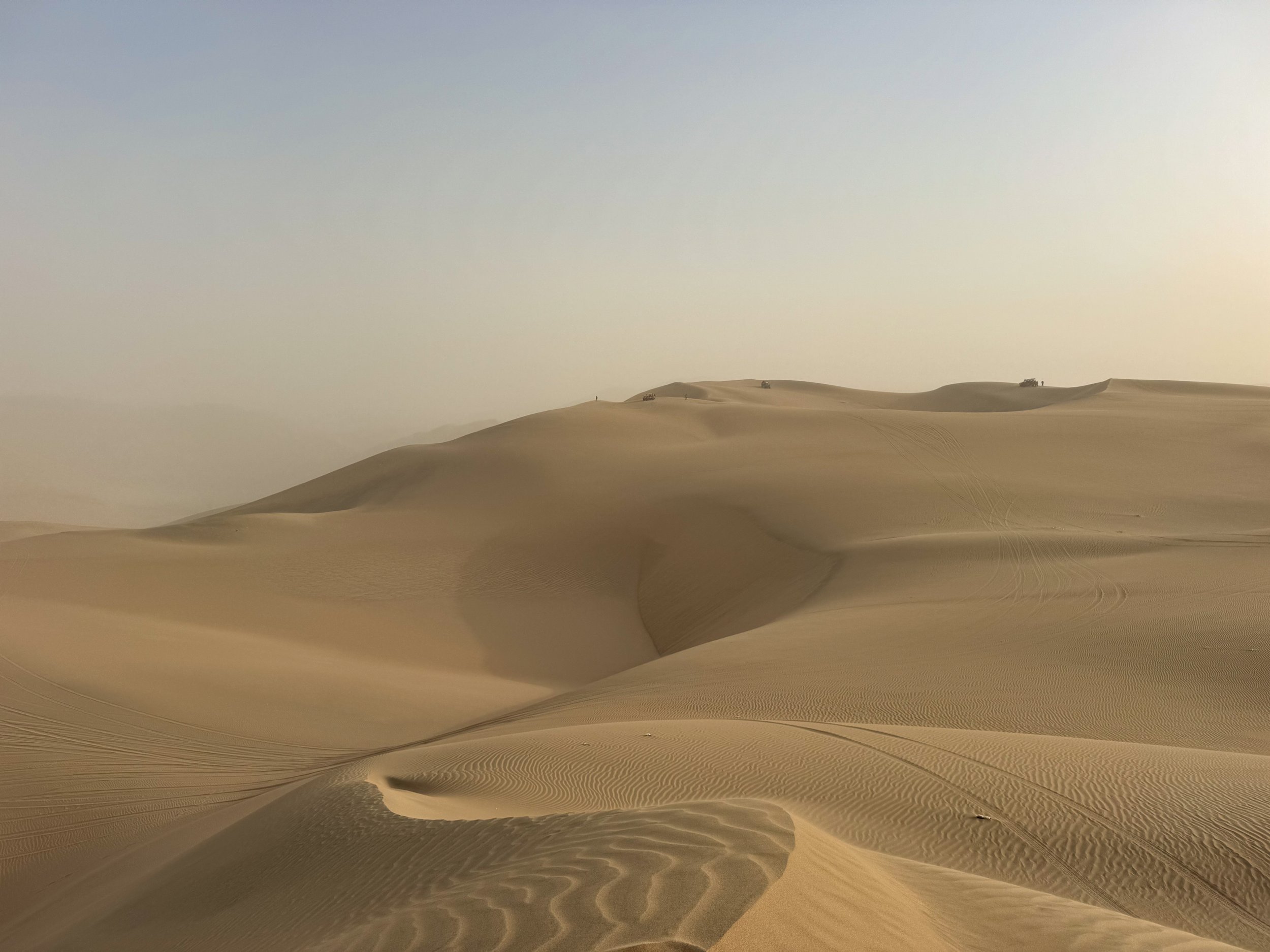
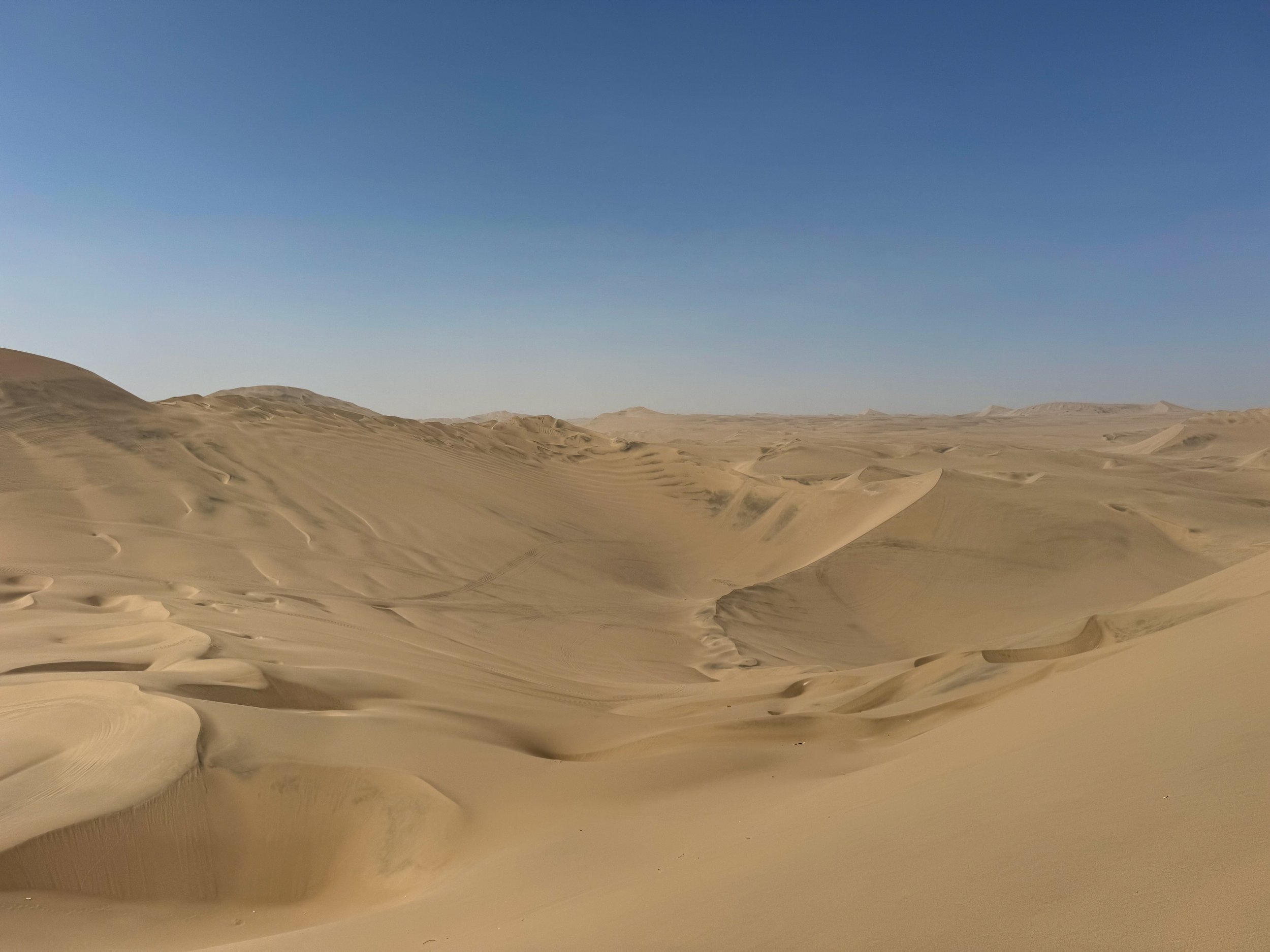
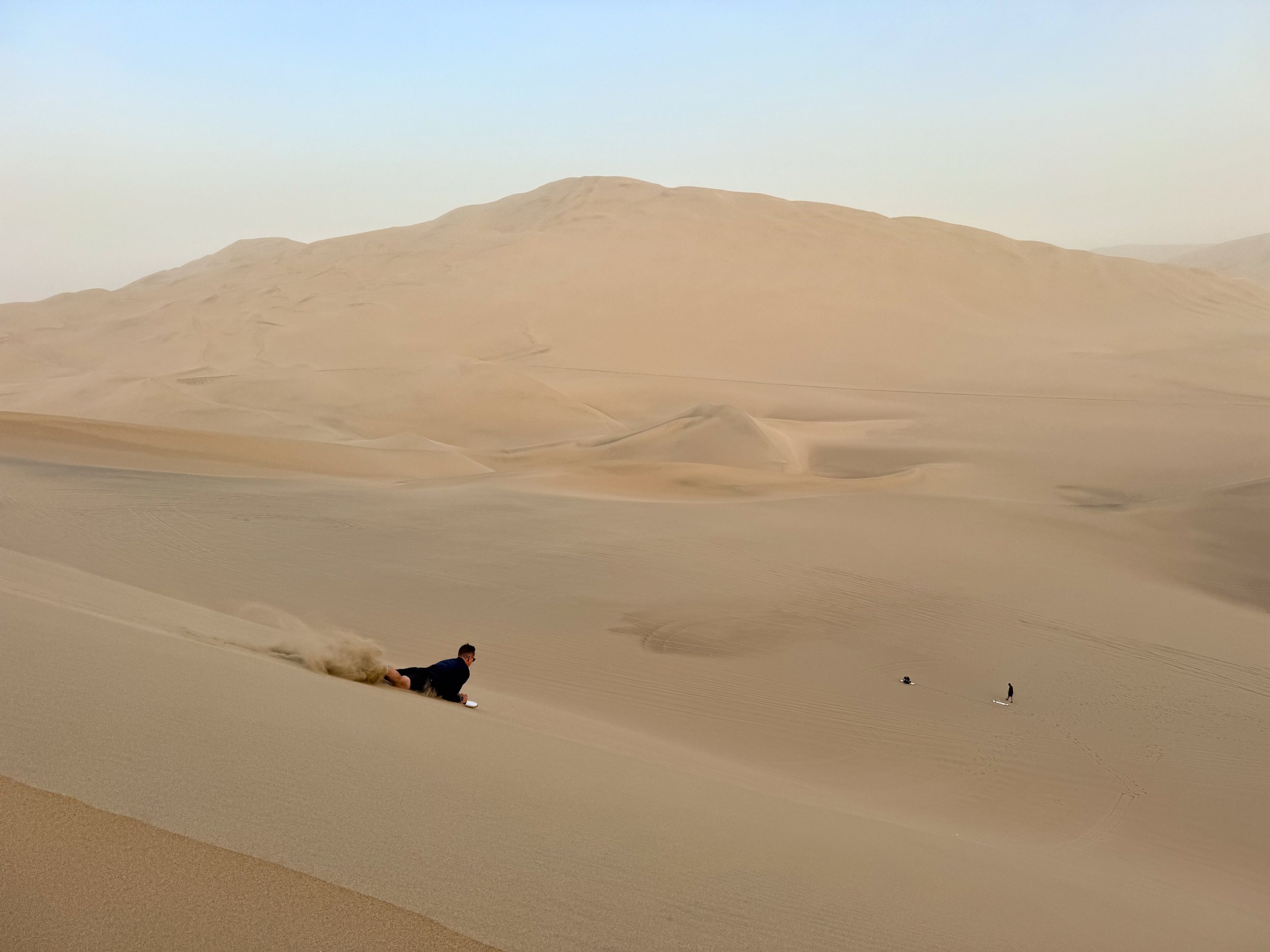
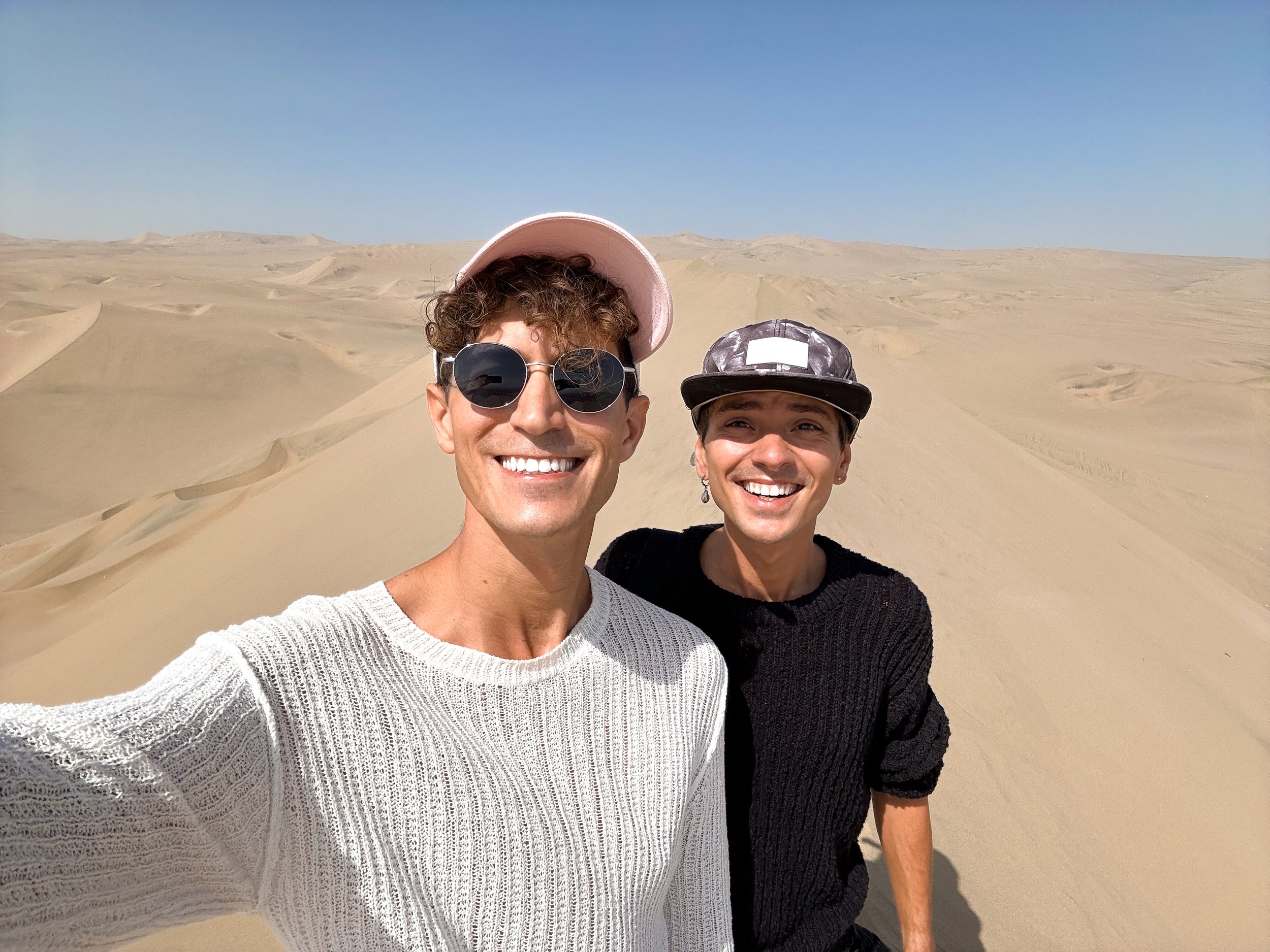
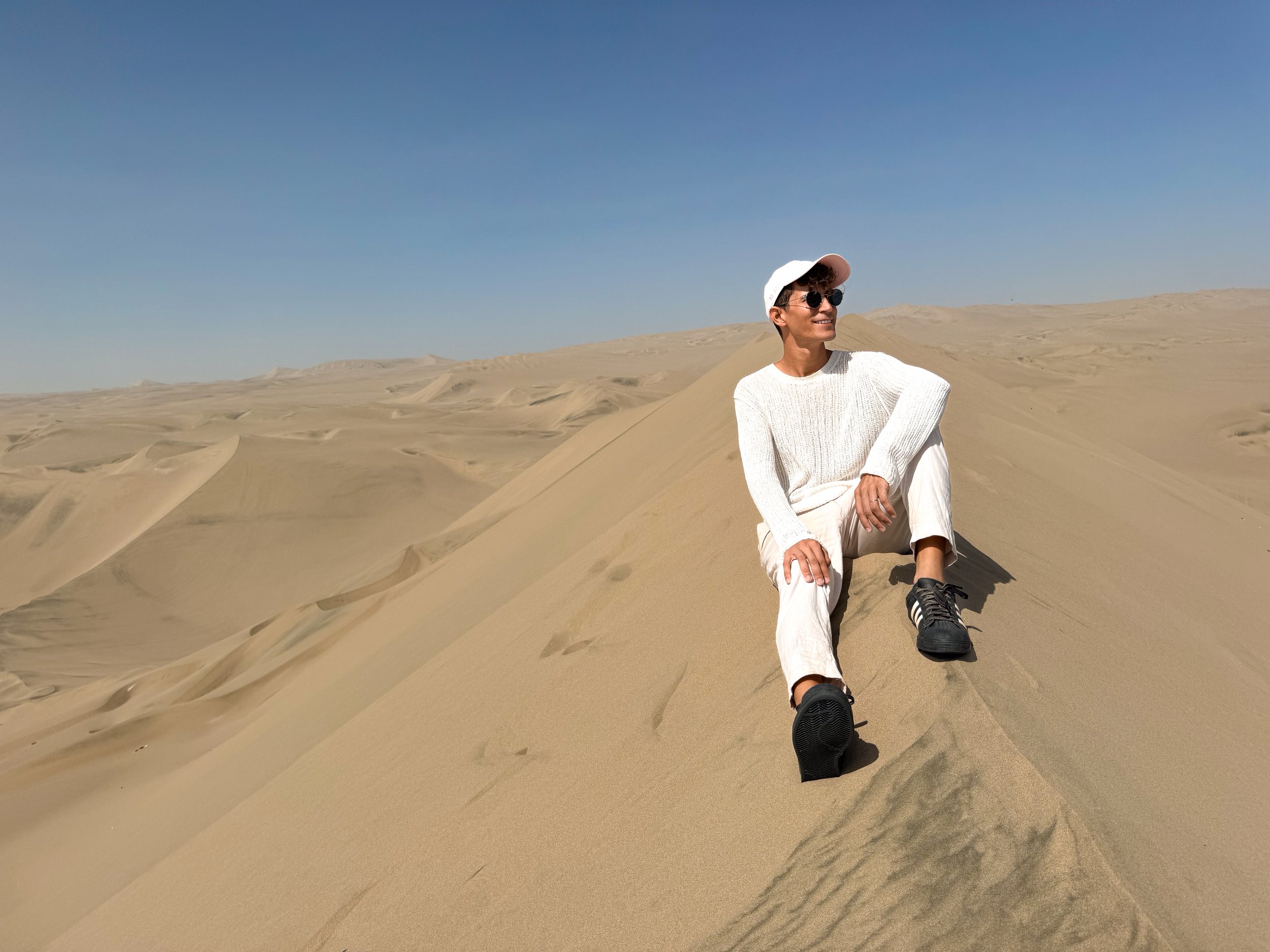
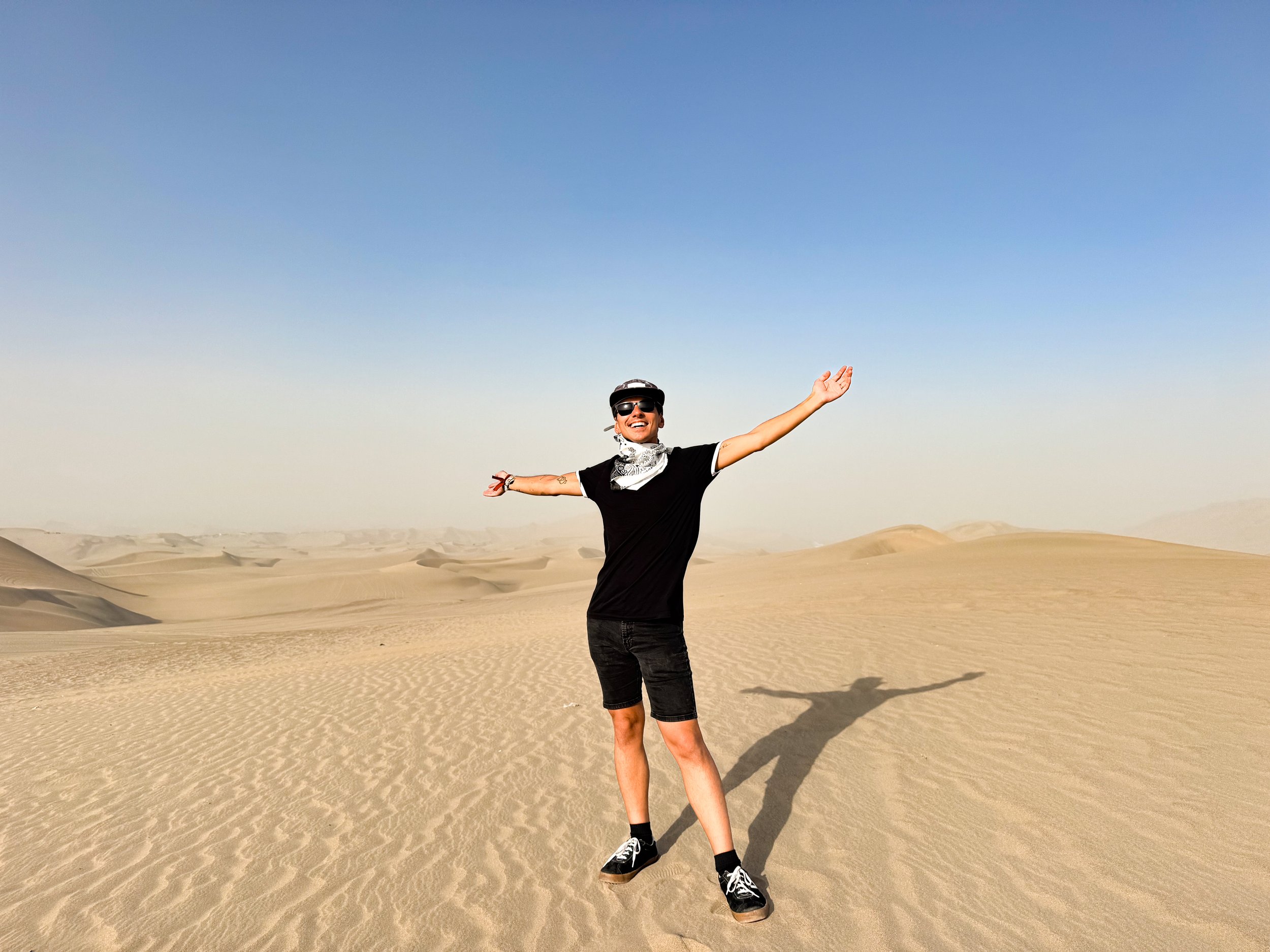
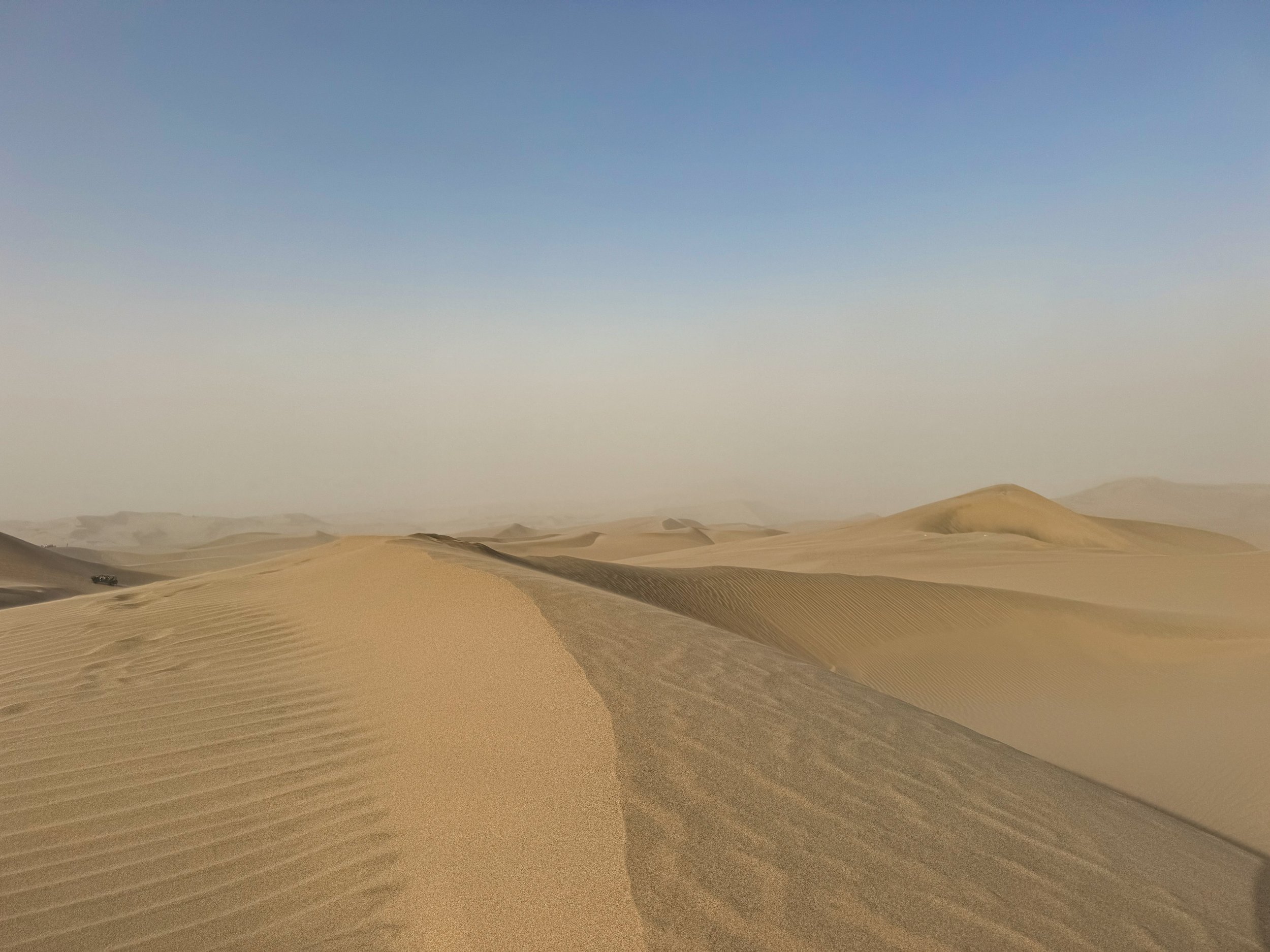
Sights
Huacachina Dunes. We woke up early and climbed both dunes surrounding the oasis. From the top of the first crest, we ate breakfast with the company of a doggie that followed us up. On the second dune, the morning fog had cleared, revealing a clear blue sky above the beautiful oasis and the vast desert dunes rippling far across the horizon.
Dune Rides & Sand Boarding. We boarded a small dune buggy that rode into the desert for an exhilarating and heart dropping roller coaster ride through the dunes, drifting sideways across the sand and down step dunes at high speeds. We stopped at multiple places for photos, sand boarding and the sunset. There were three dunes to sled, sand-board or ski down, each increasing in length and speed.
Where to Eat, Drink & Sleep
Viajero Hostel Huacachina. With its inviting atmosphere and well ran experience, Viajero is one the best hostel we’ve stayed at! It has a large courtyard with a restaurant, bar, pool and numerous style lounge areas surrounded by multiple buildings home to dorms and private rooms. They offer nightly events to meet other guests and keep entertained including karaoke and dancing. Book here!
Vittoly Cafe. A small cafe with breakfast dishes, to go empanadas and cookies. It’s a quick spot to stop on the way into our out of town for a bite to eat and refreshment.
Huaca-Fucking-China. An iconic restaurant and bar in Huacachina known for its name, Peruvian dishes and cocktails. Come here for a drink and meal overlooking the lake.
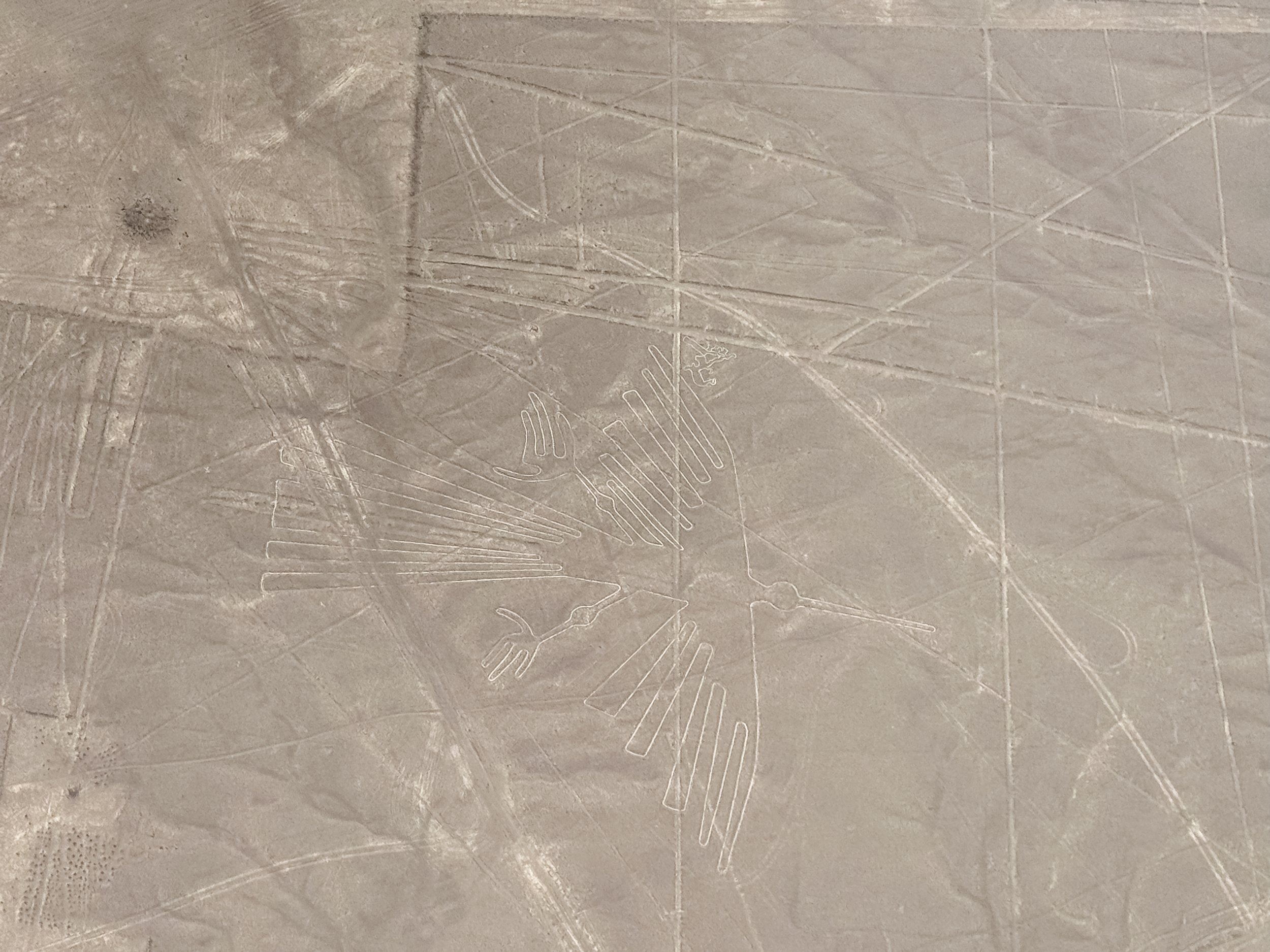
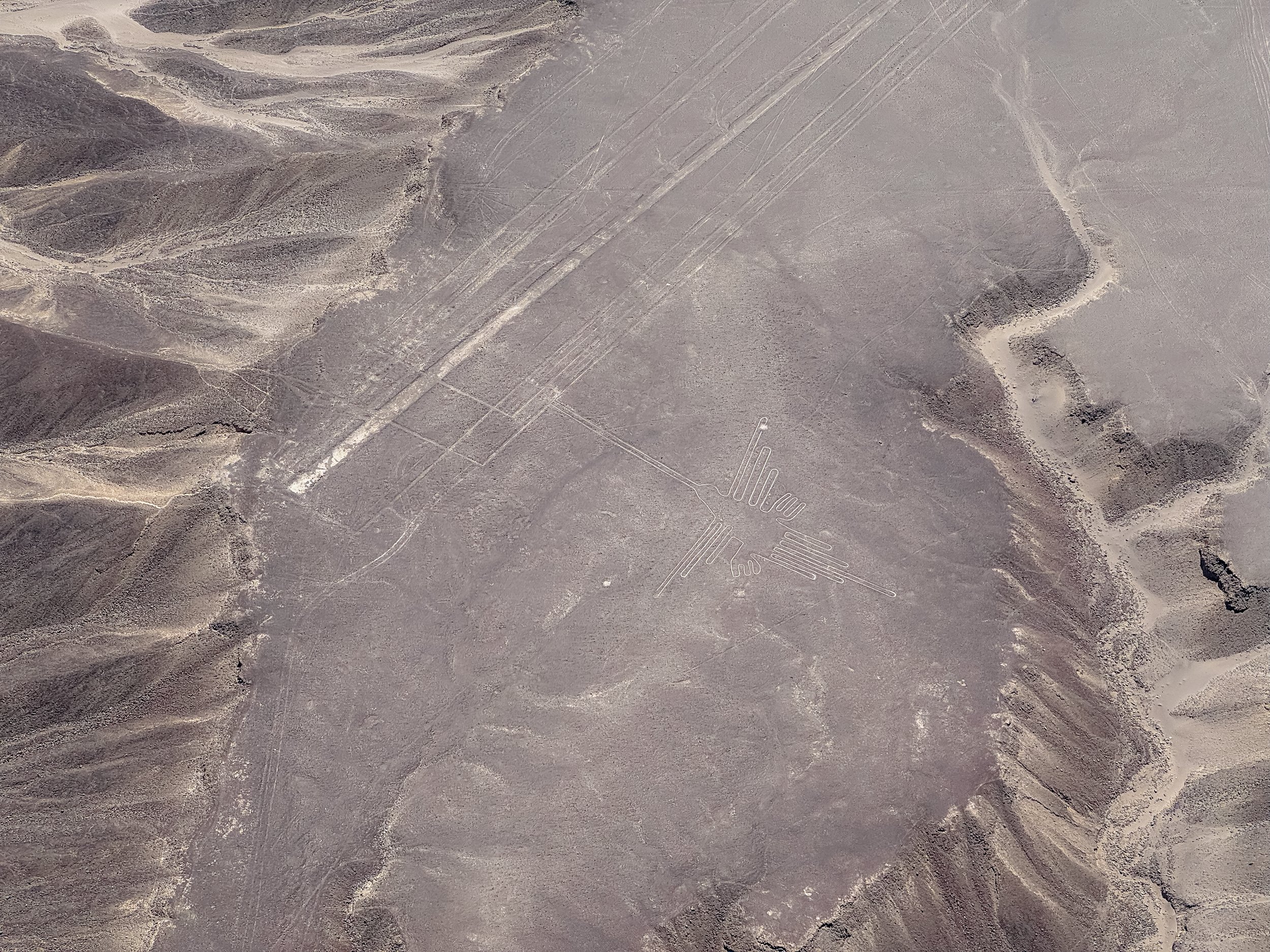
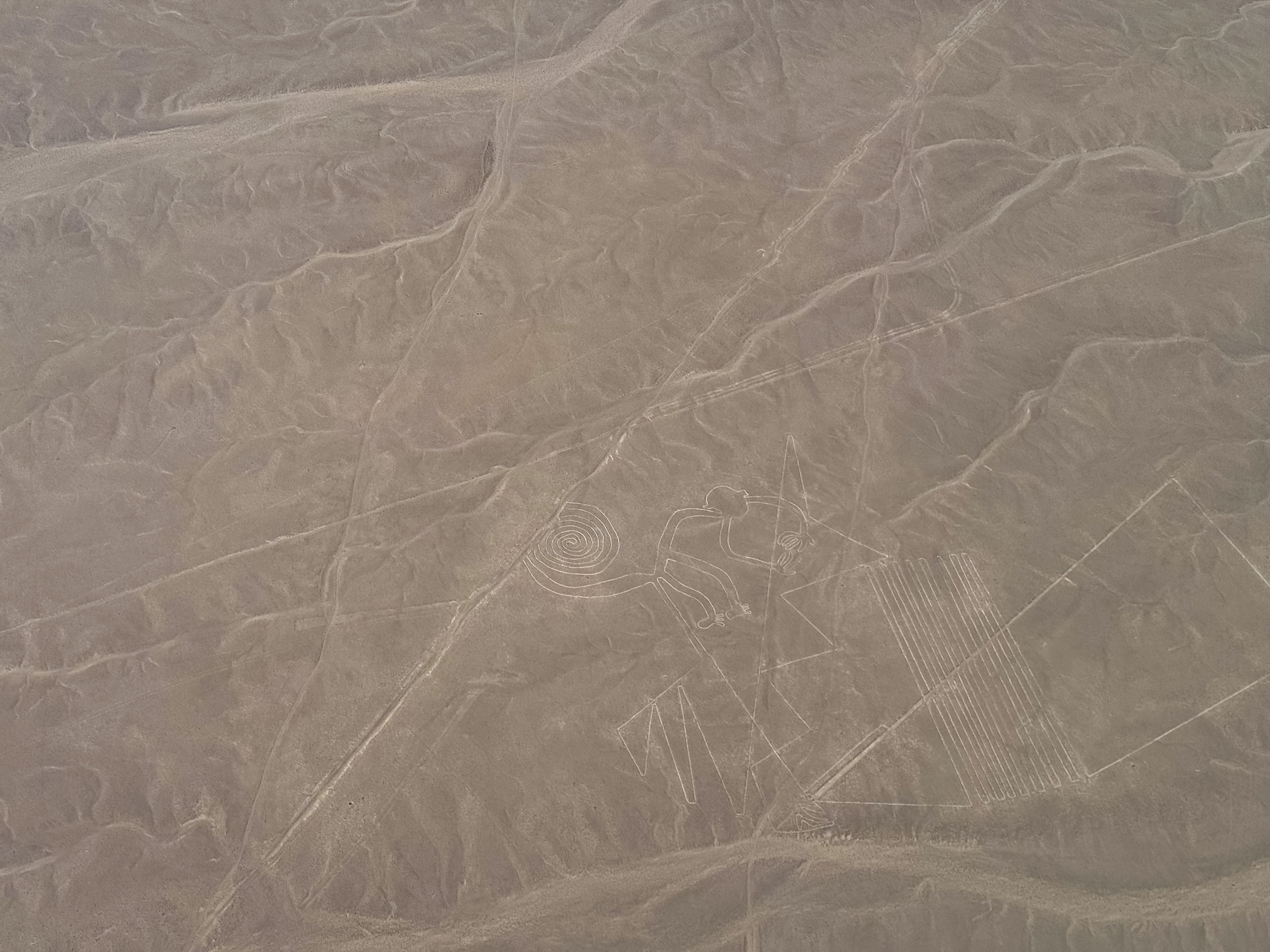
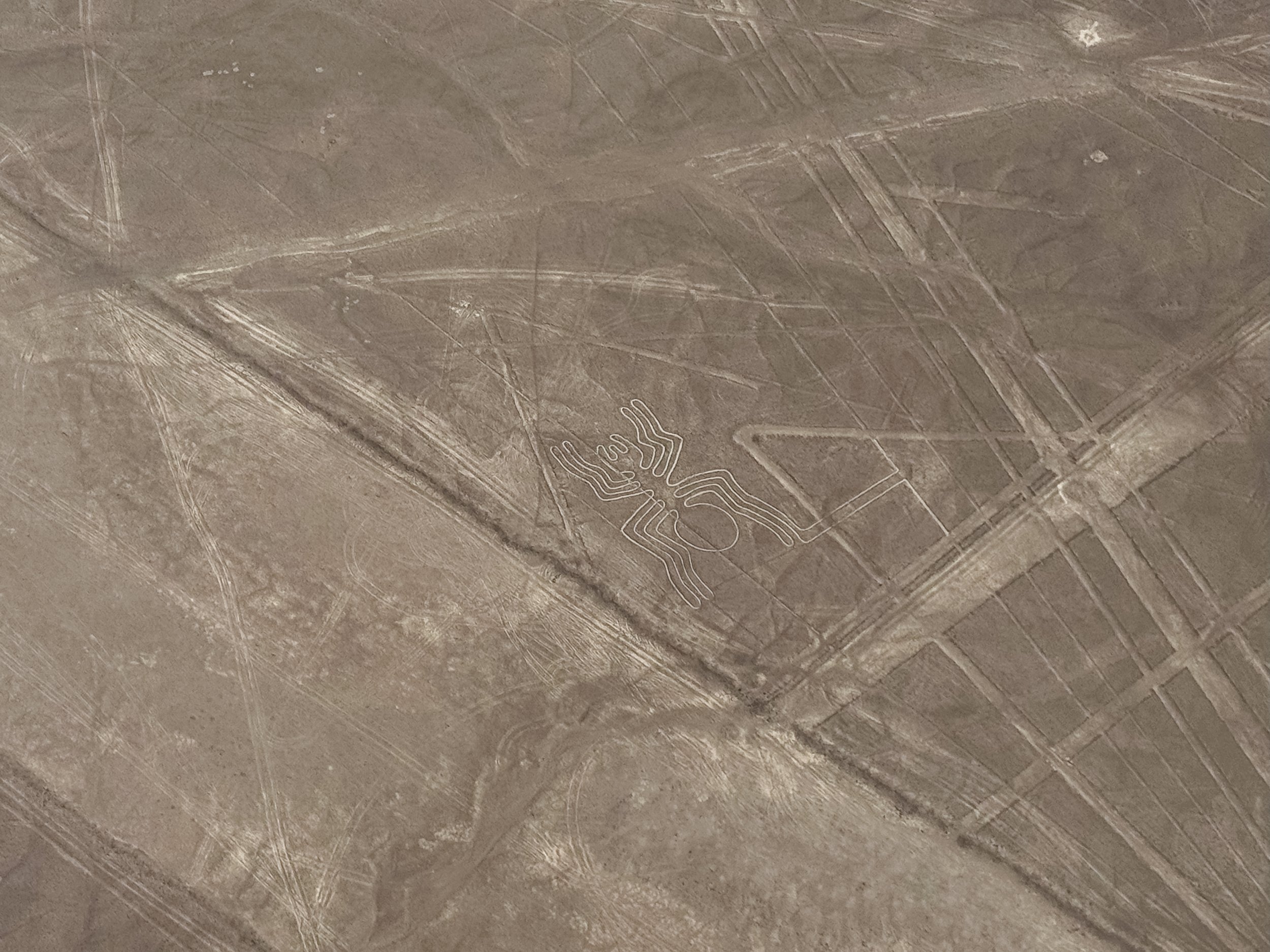
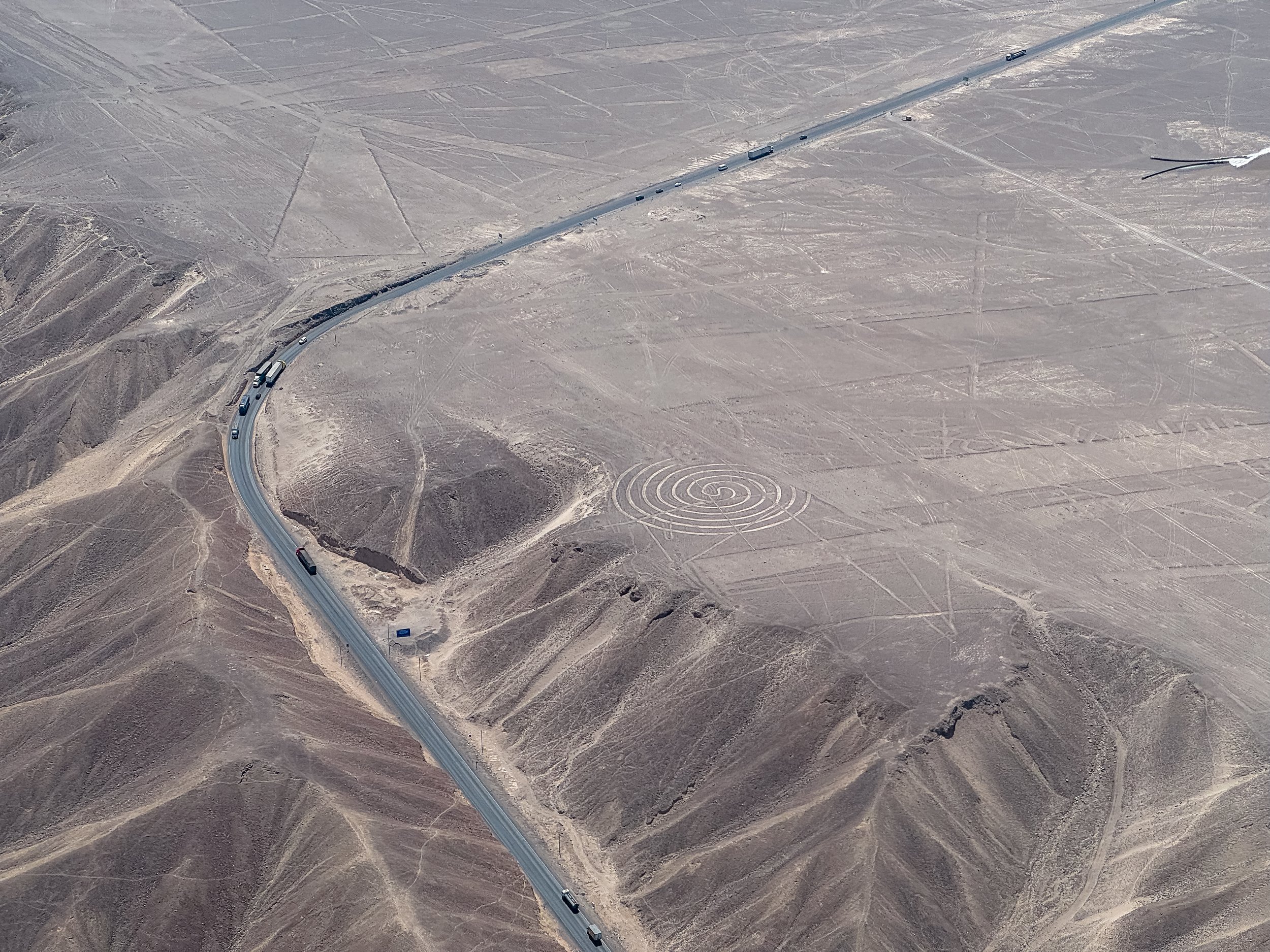
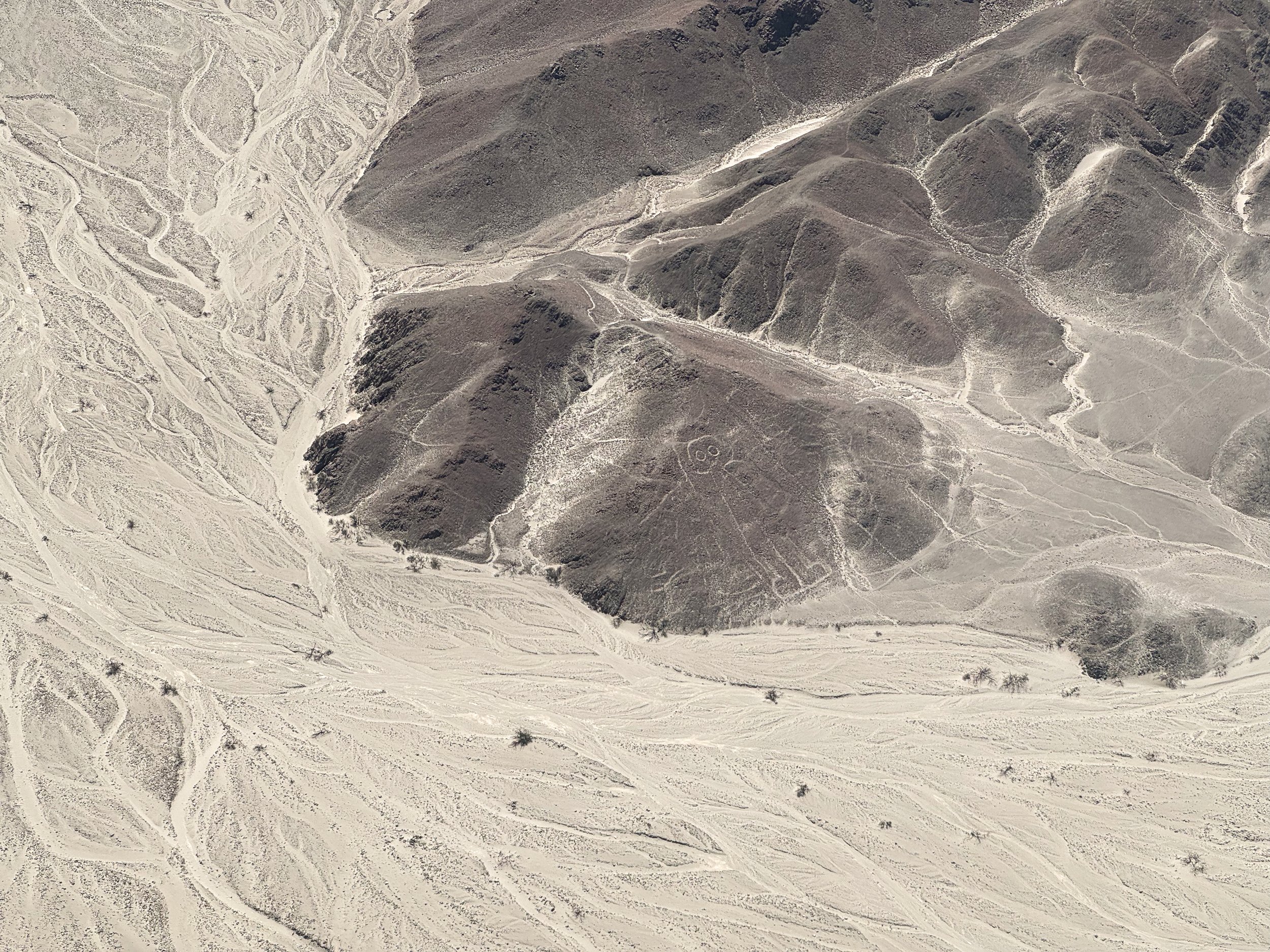
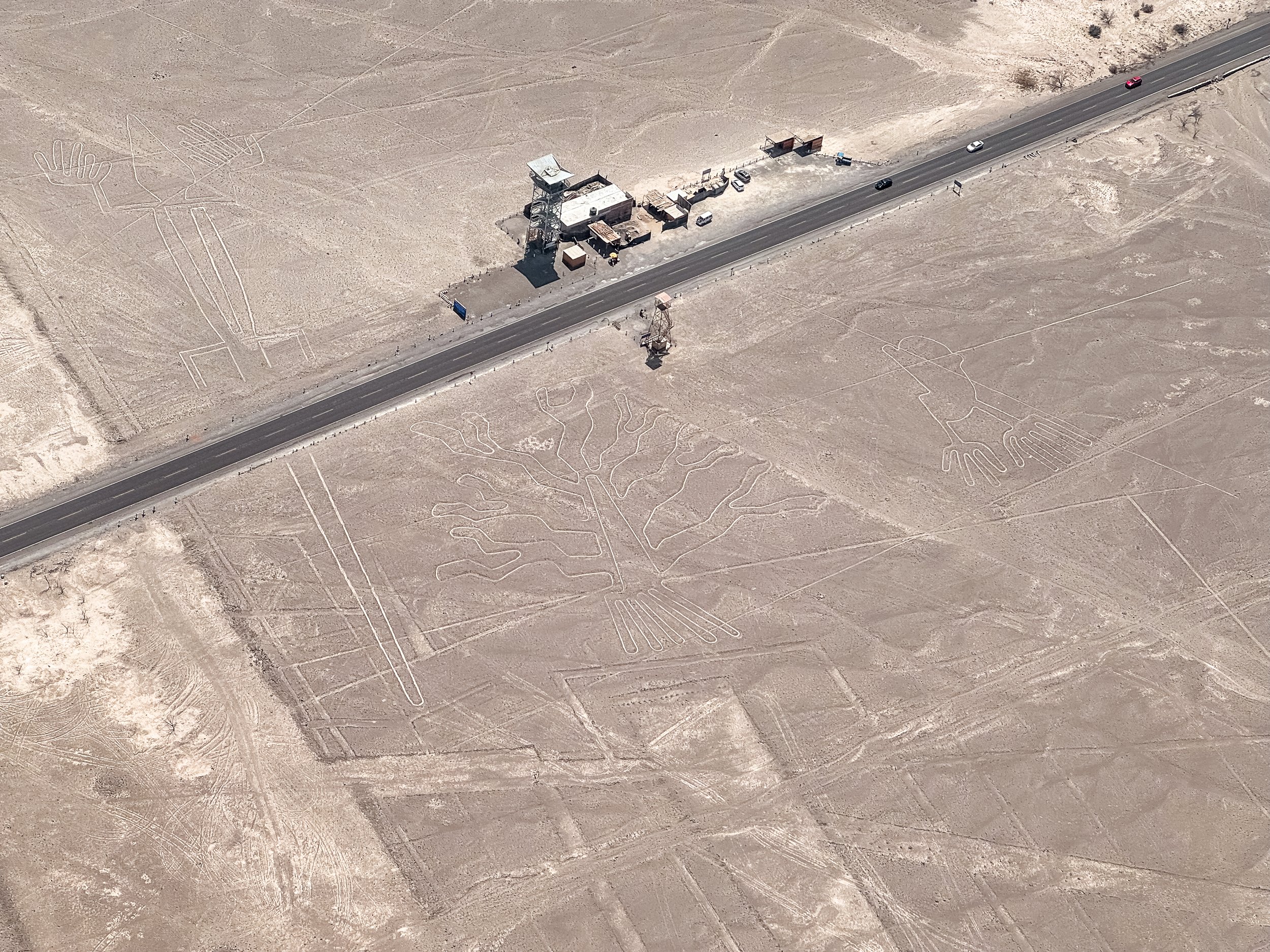
Nasca
Nasca is a Peruvian desert city famed for the archeological ruins and remains of the Nazca civilization including the Nasca Lines, ancient aqueducts and cemeteries with mummified remains.
The Nasca Lines
The Nasca Lines are some of the most significant archeological sights in Peru. Carved into the desert landscape by the Nasca people, the ancient geoglyphs depict animals, trees, people and mysterious shapes, some stretching hundreds of meters across. The lines can be observed from an observation tower or by flying above them.
Nasca Lines Flight. We took a flight over the Nasca Desert to view the Nasca Lines. During the flight, we flew over and circled many the remarkable geo-glyphs including the most iconic like the spider, hummingbird, condor and monkey. In addition, we took in views of the desert landscape, farms and vineyards, foot hills of the Andes mountains and world’s largest sand dune in the distance.
It is the best way to view a majority of the Nasca Lines though not the cheapest. The flight lasted about 30 minutes, costing $120 USD and 77 Sols in airport fees per person. The pilot circled about a dozen lines from both sides of the small plane as the co-pilot narrated. All 6 passengers, including us, had an equal opportunity to view most of the lines.
Nasca Tower. A roadside tower, about 4 stories tall, overlooking three of the Nasca Lines. One of a tree, hands and a salamander.
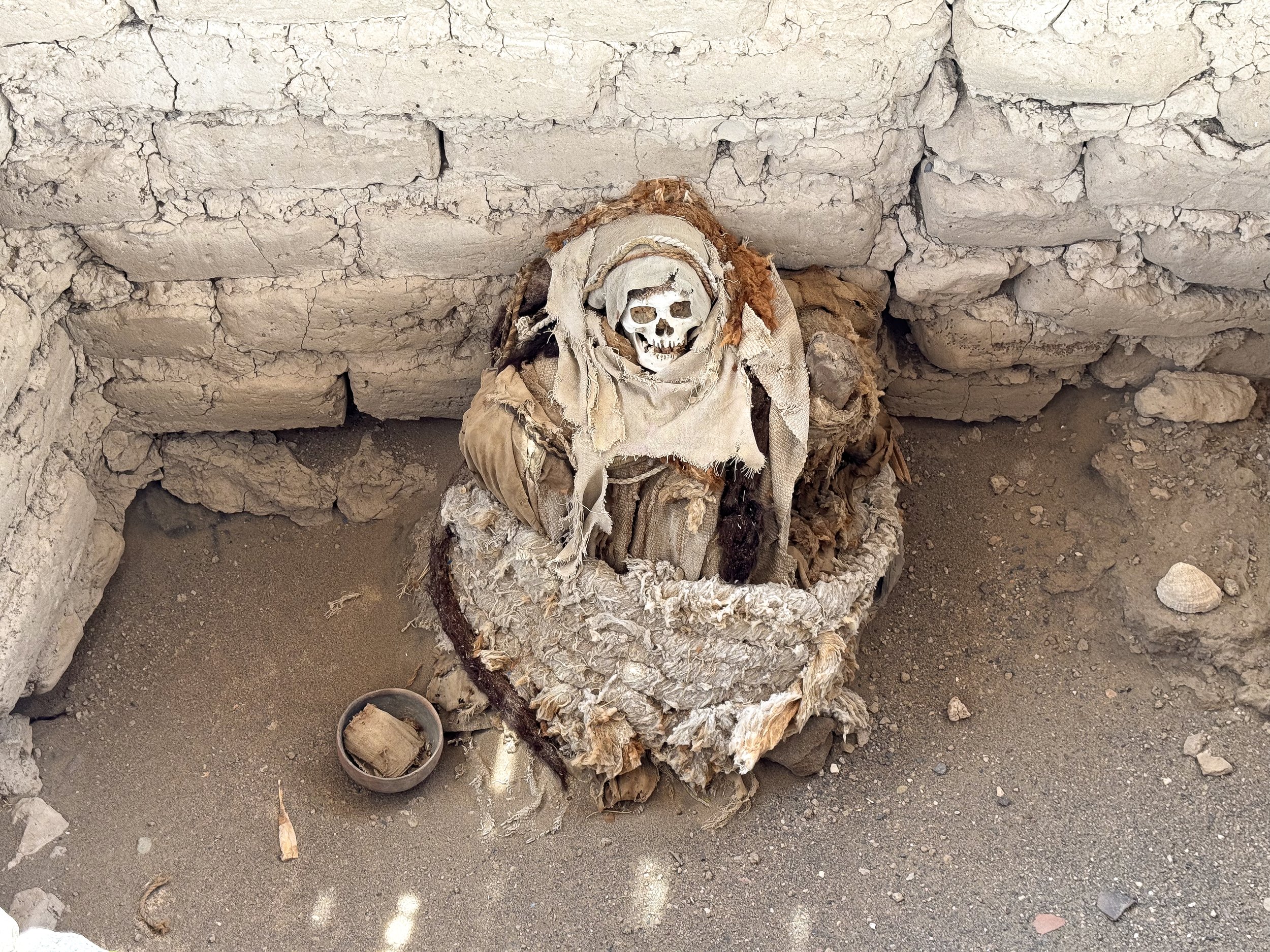
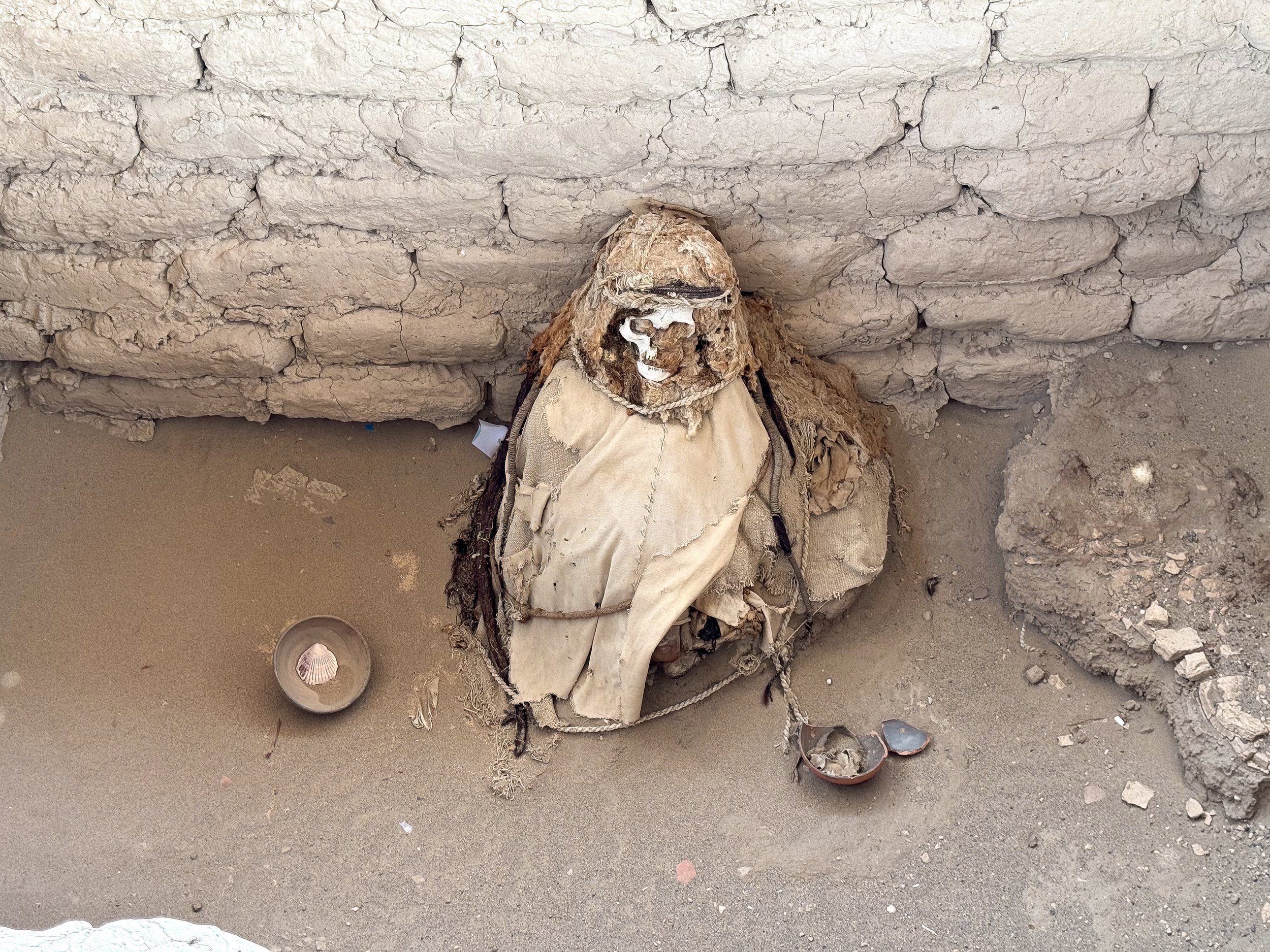
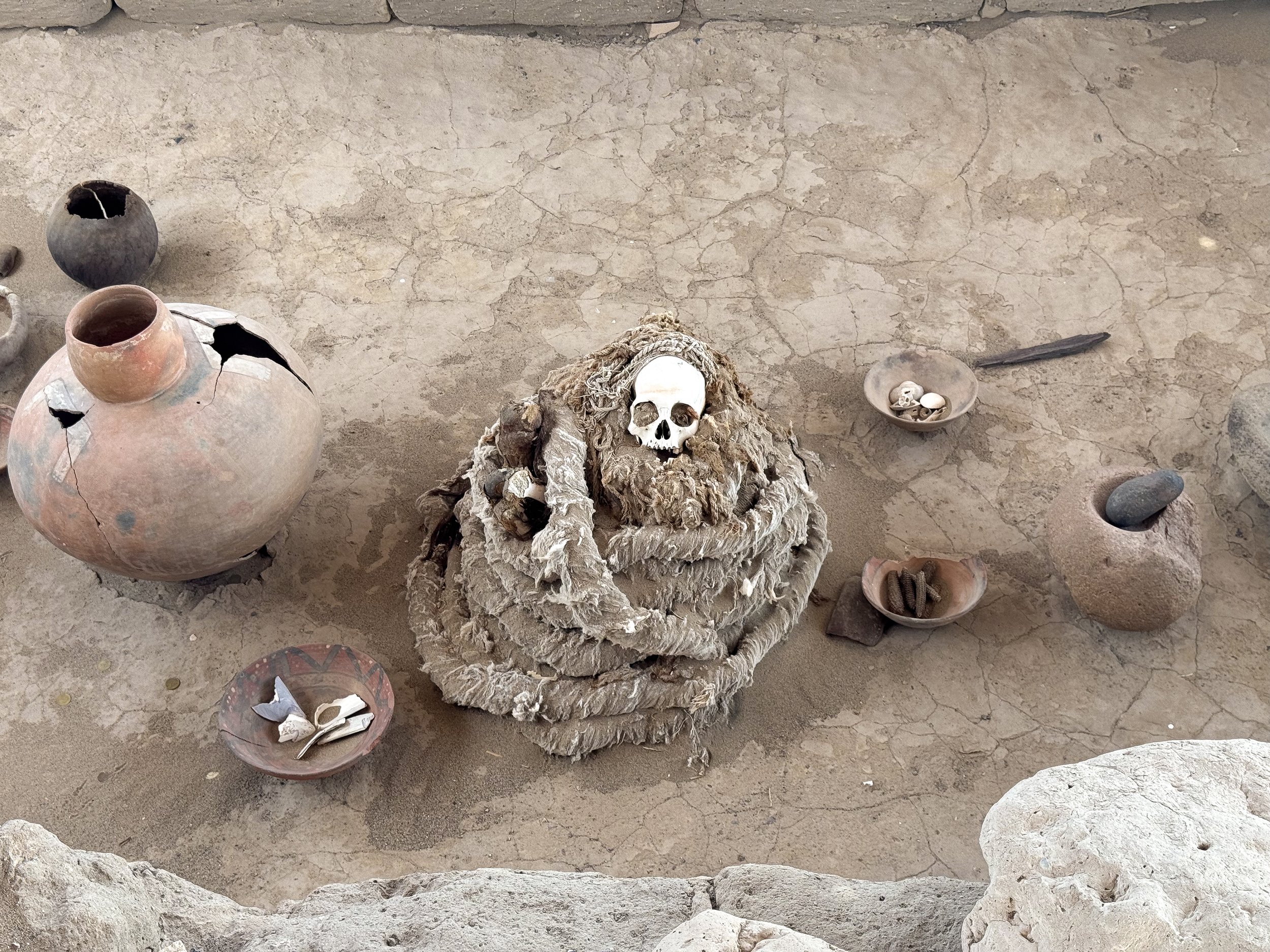
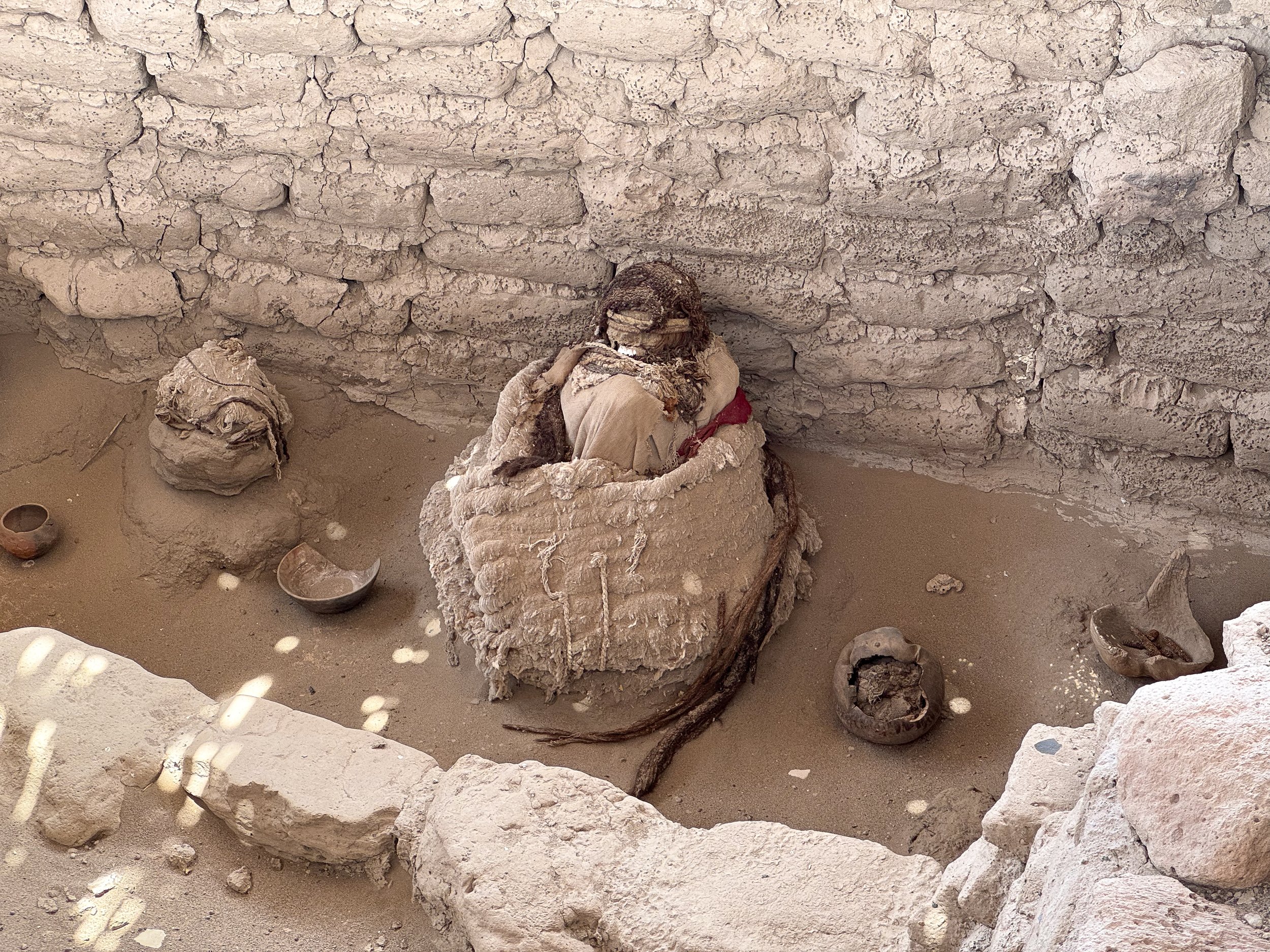
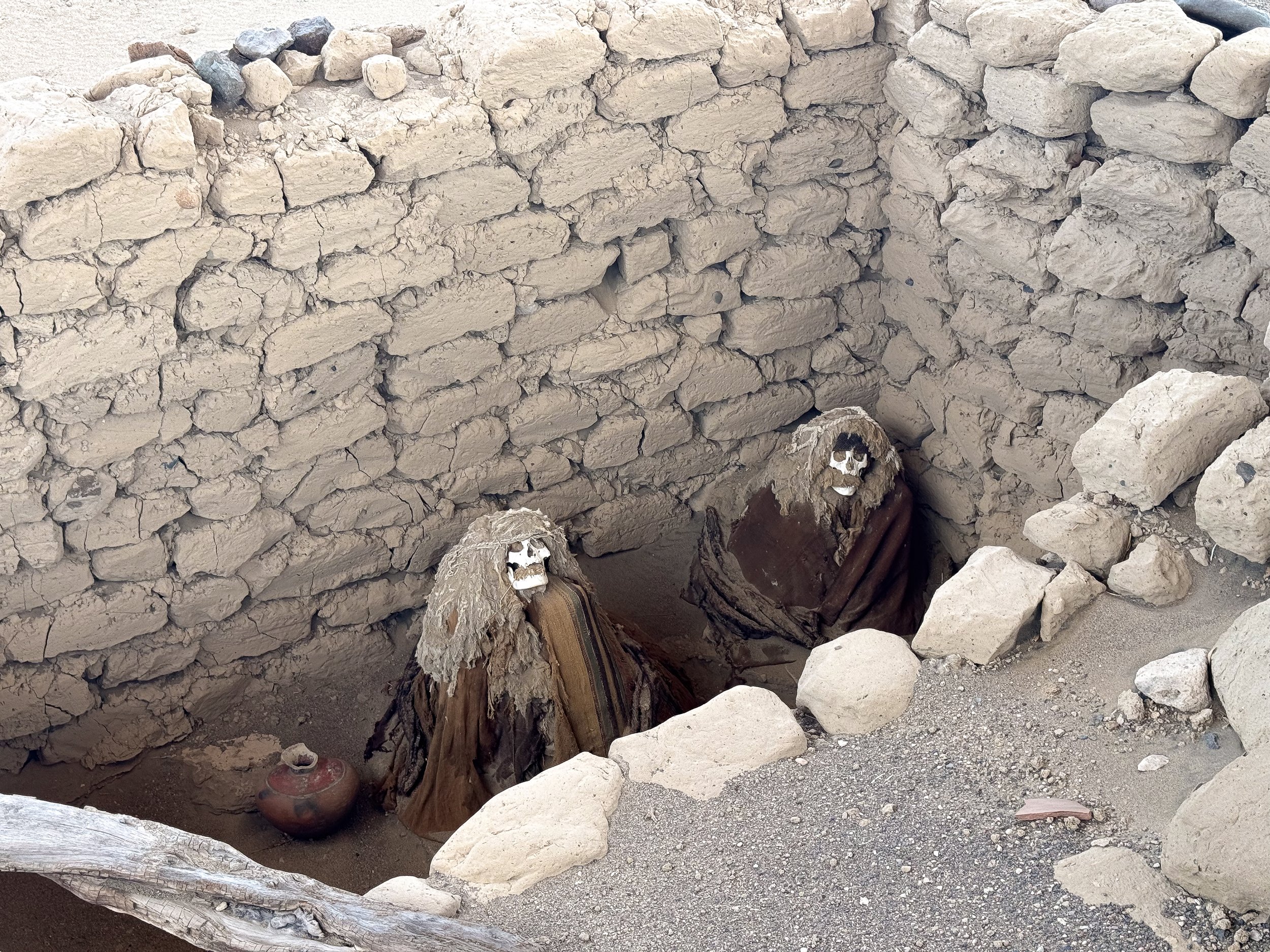
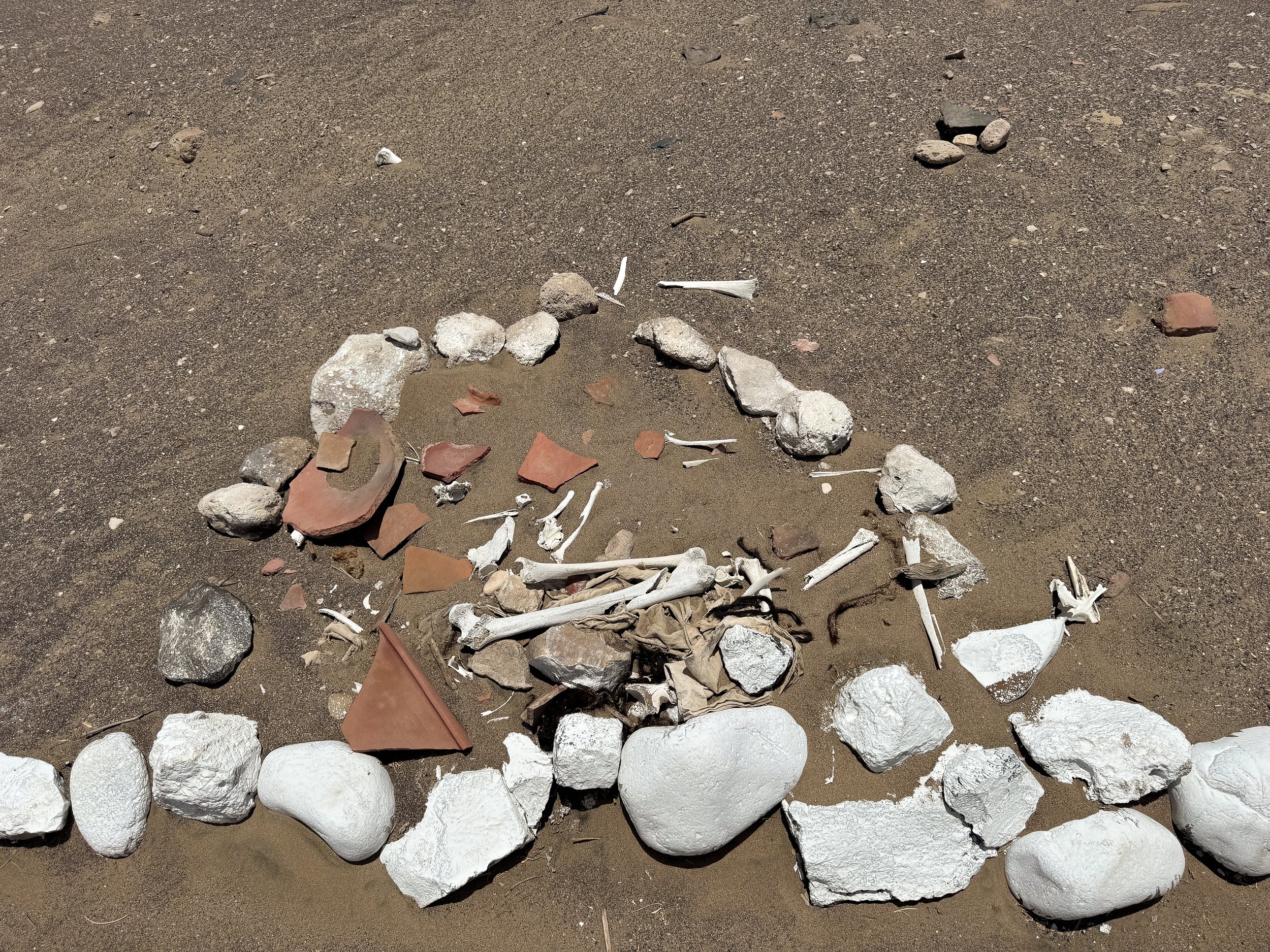
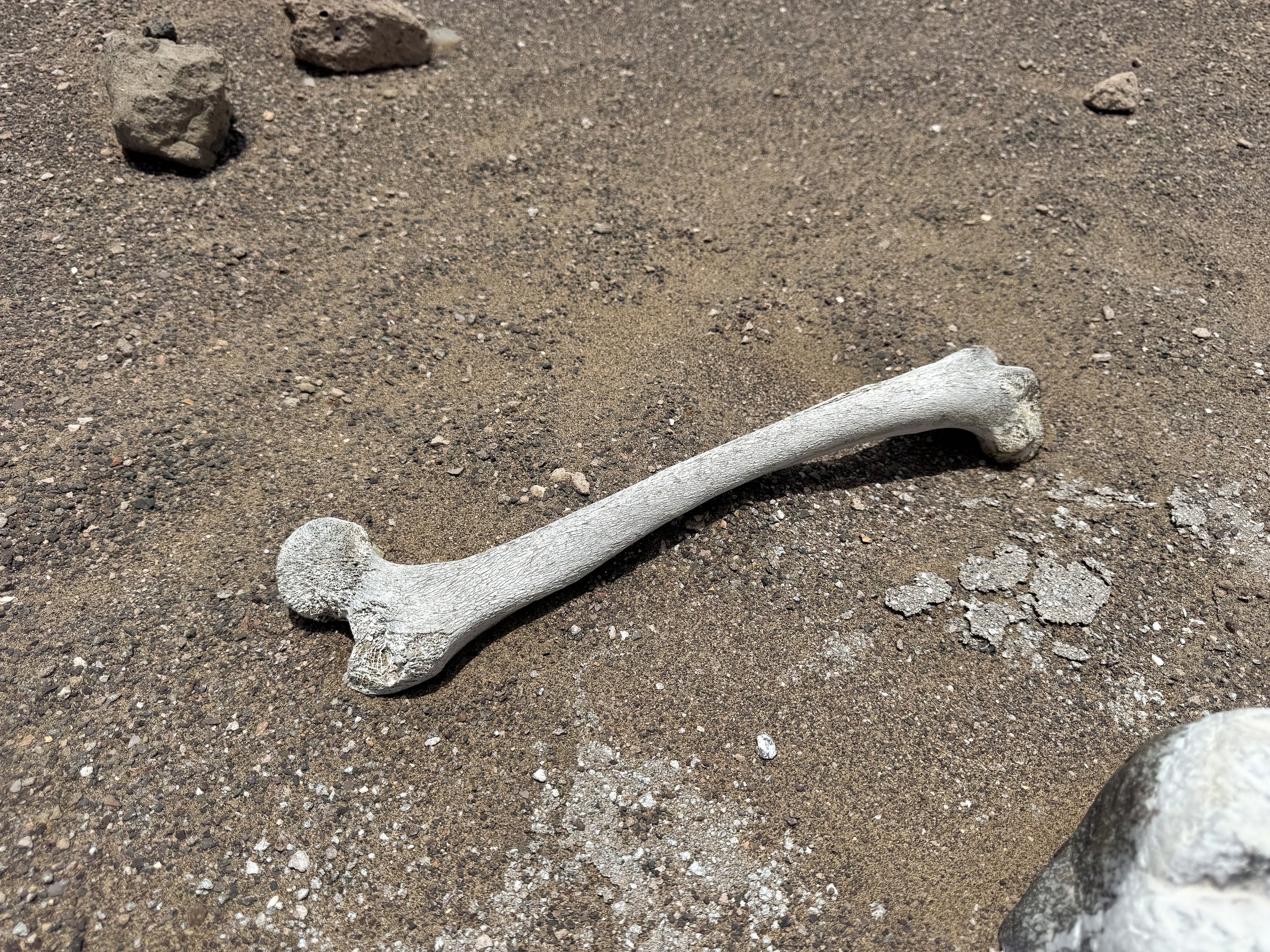
Sights
Cantalloc Aqueducts. A series of spiraled and circular stone aqueducts that drain into an underground canal for carrying water. Even during the peak of the dry season, the canal had flowing water while the adjacent river was completely dried up. They were build hundreds of years ago and are still in use today.
Los Paredones. The ruins of a terraced Incan city with trails leading past crumbling adobe brick walls, semi-restored buildings and broken fragments of ancient pottery scattered across the ground. It’s located about 20 minutes on foot from the Plaza de Armas. The ticket allows for access to other sights in the city including the Cantalloc Aqueducts.
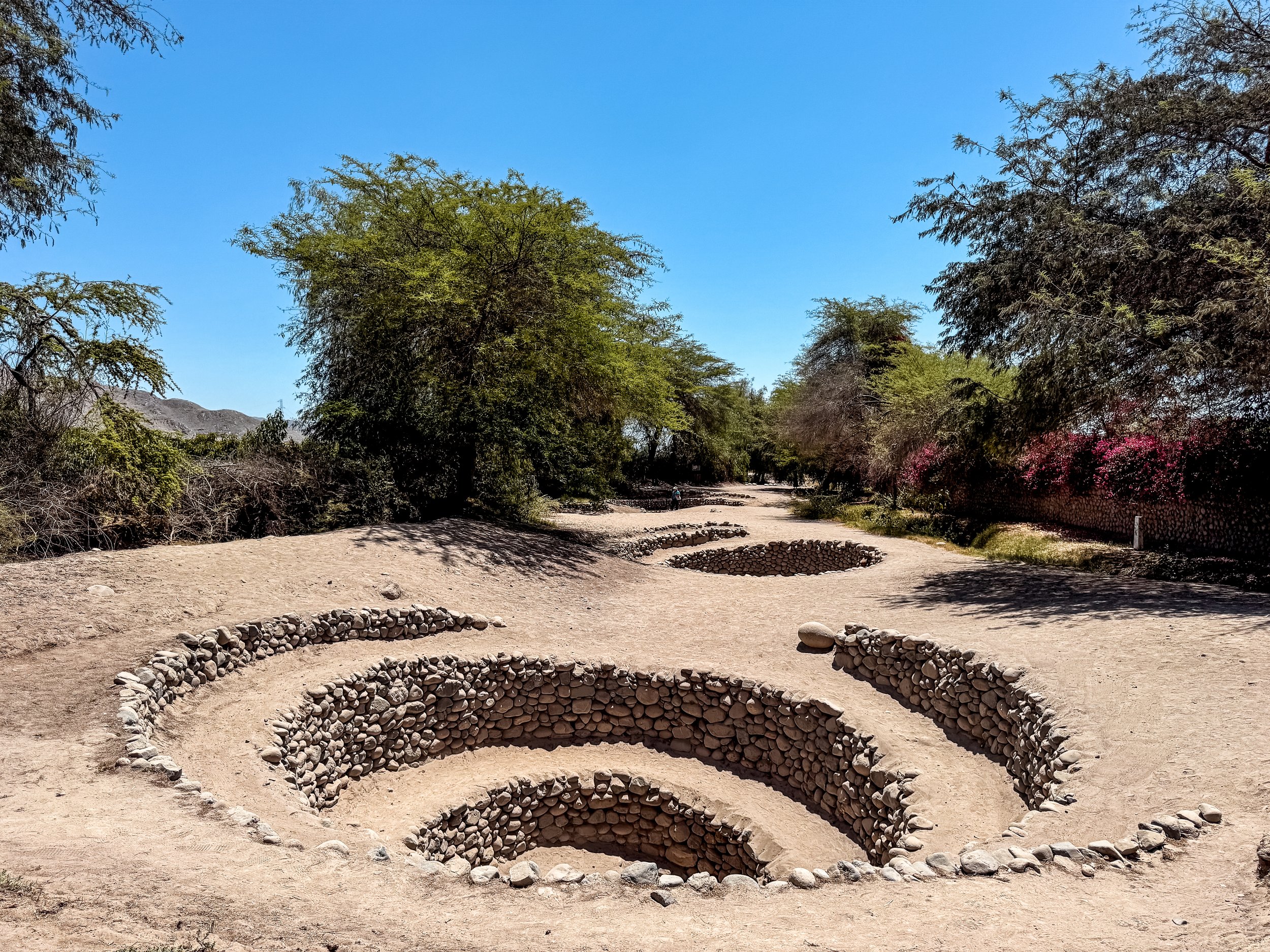
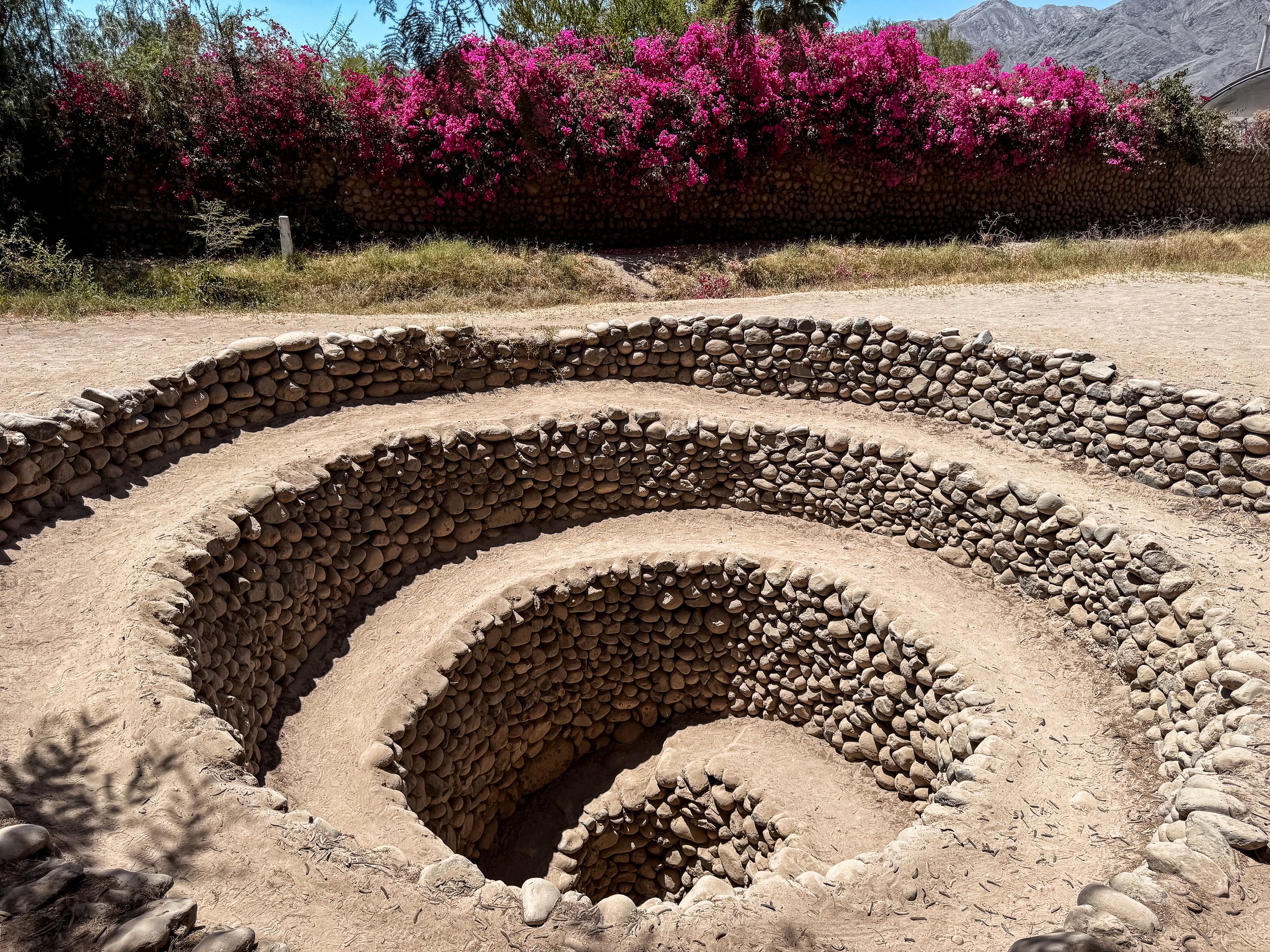
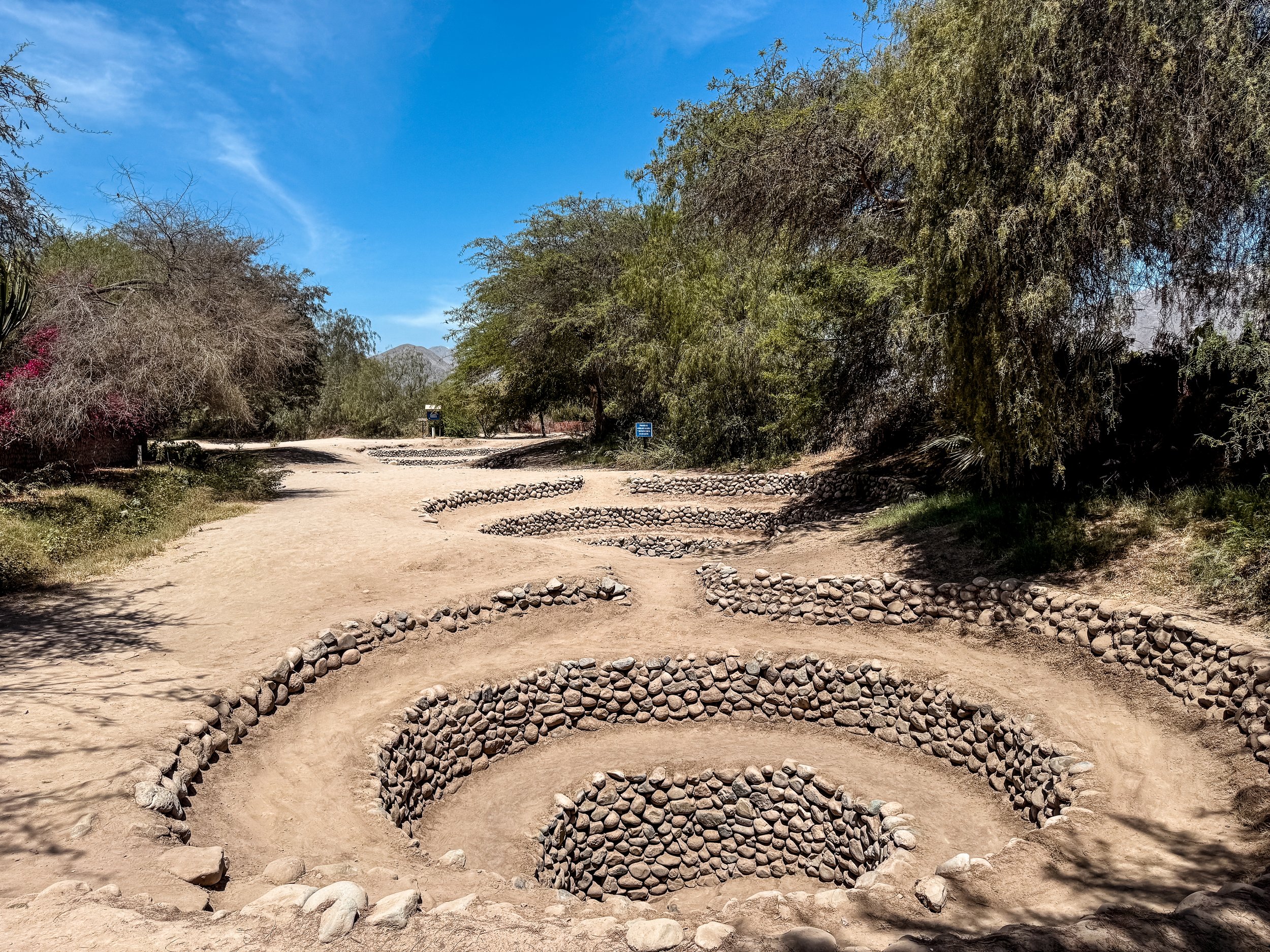
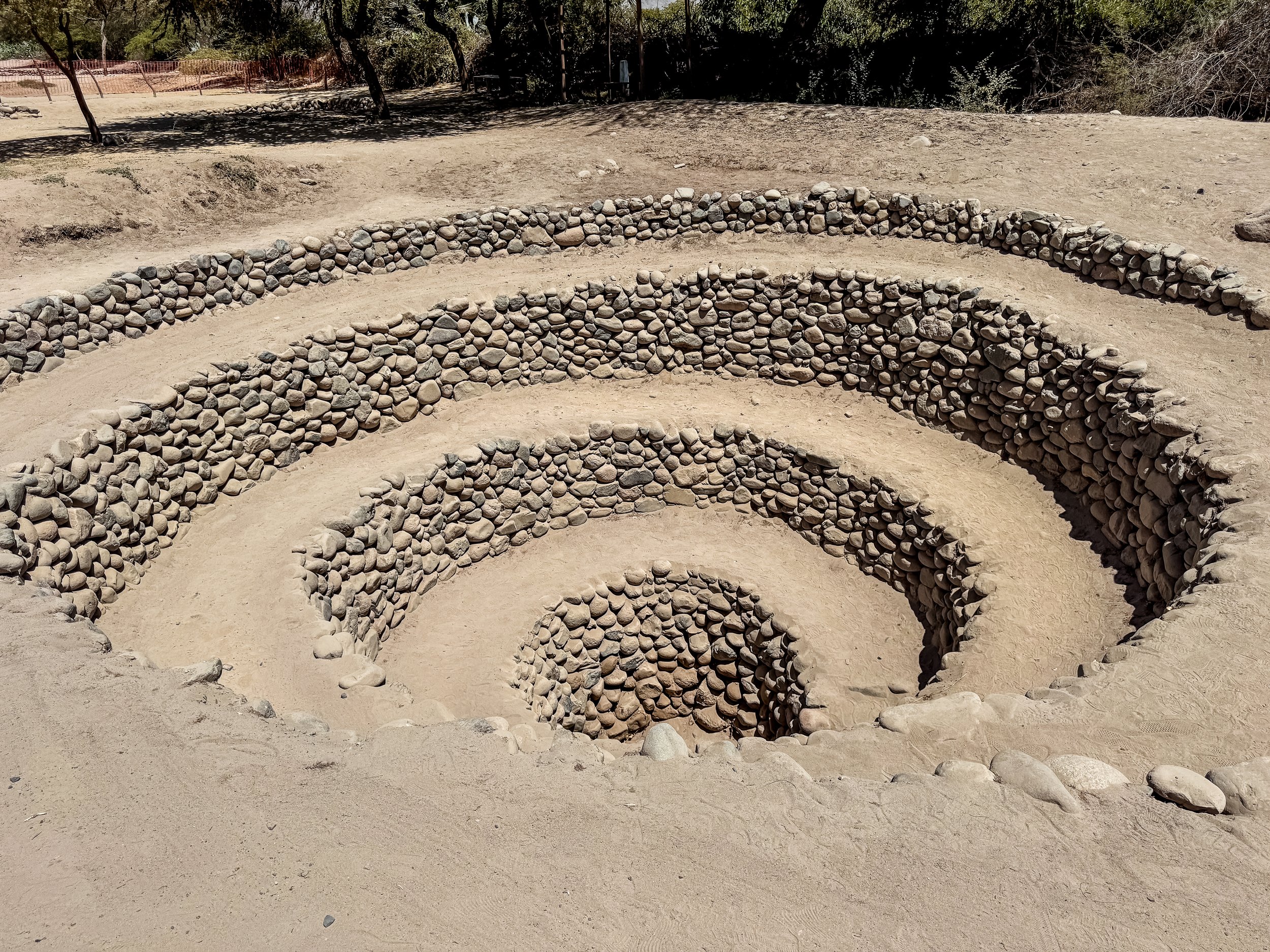
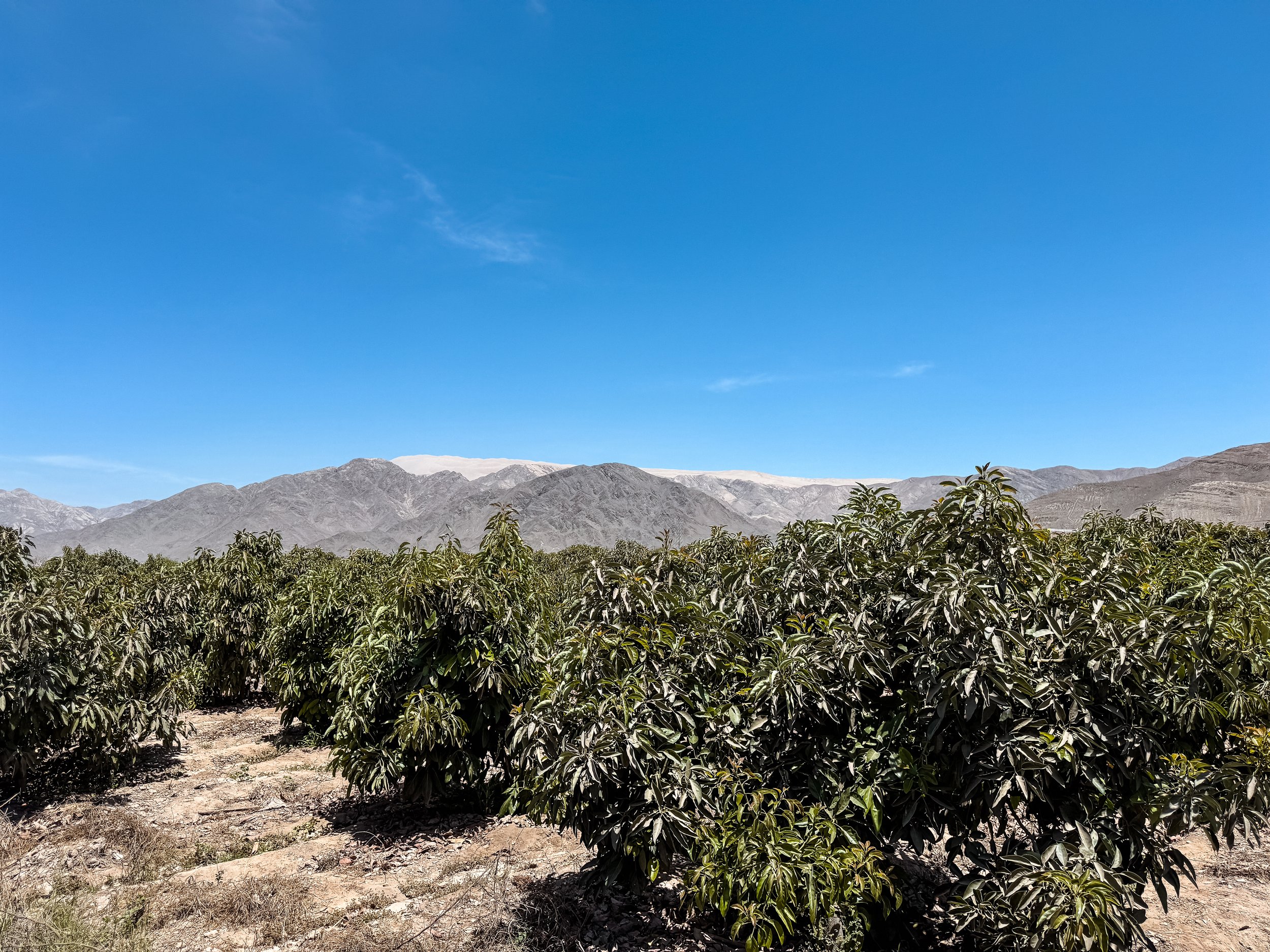
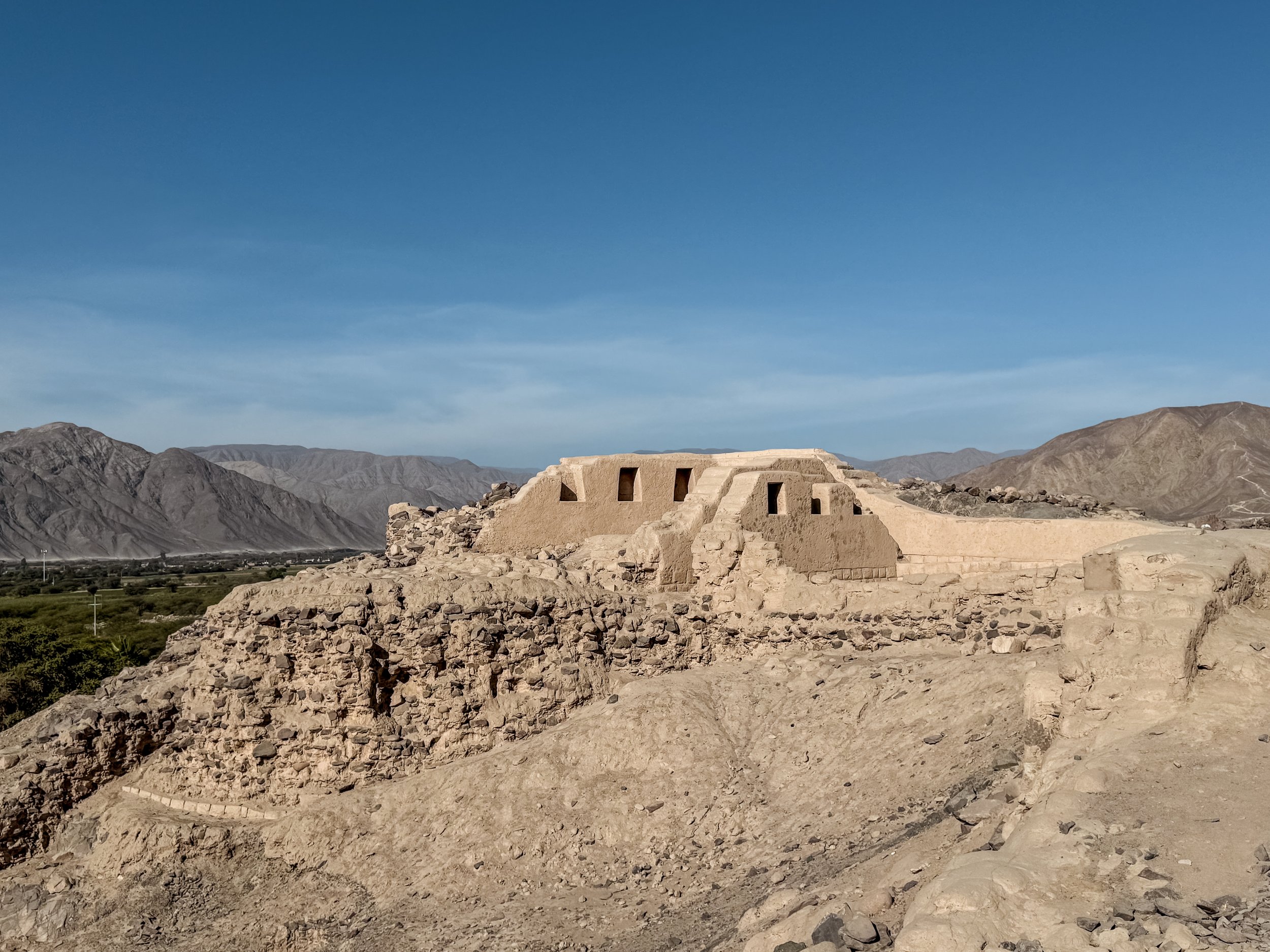
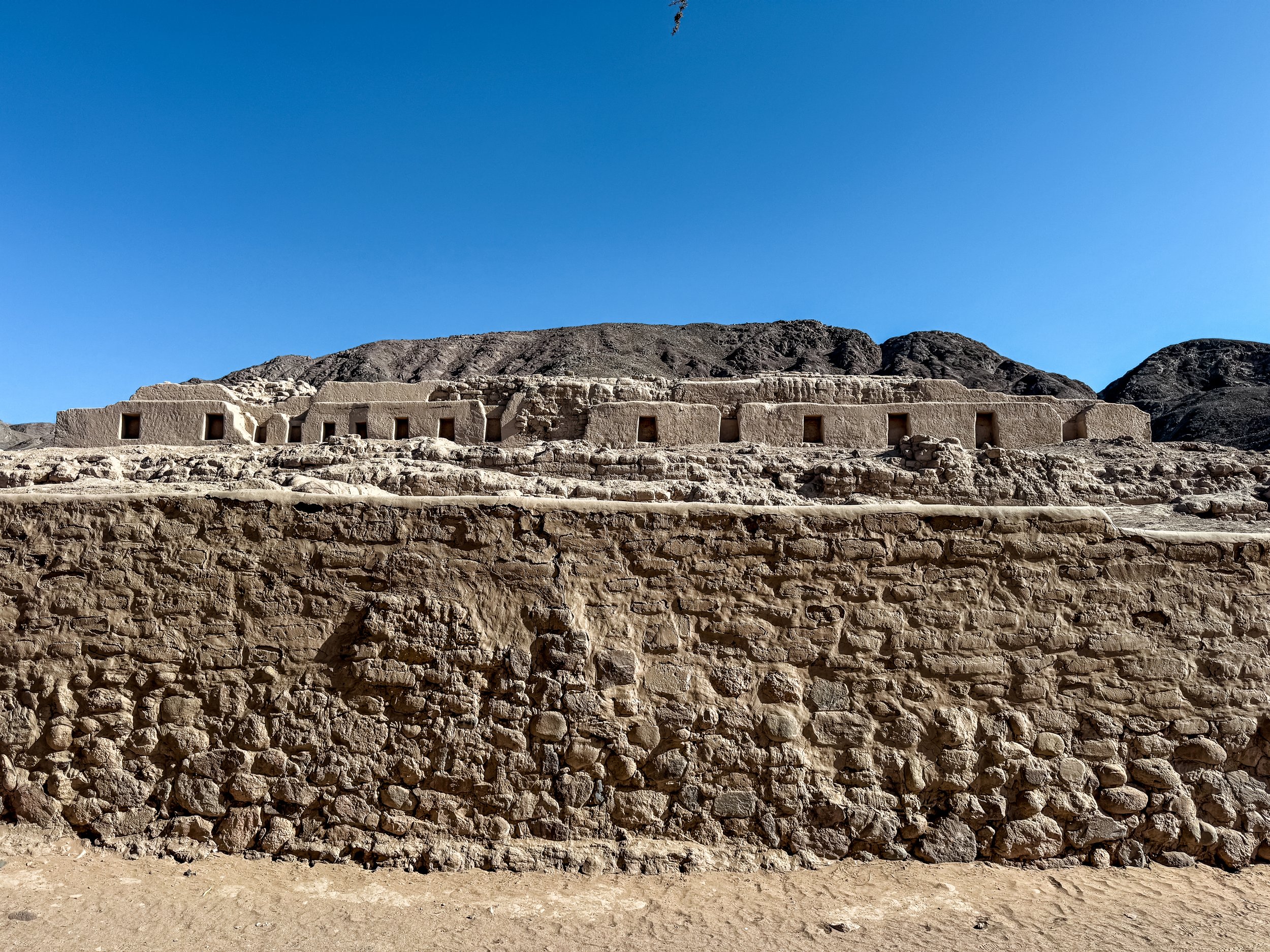
Cementerio Chauchilla. An ancient cemetery with the mummified and skeletal remains of the Nasca people dating back to 200 BCE. Inside the now exposed adobe brick tombs, bodies are buried facing east in an upright fetal position and wrapped in a basket of linens. Pottery holding objects meant for the afterlife are placed around them as their skulls stare outward baring lengthy strands of braided hair.
Due to grave robbing over the last century, bone fragments, torn linens and broken pottery from hundreds of tombs can be seen scattered across the landscape. Only the restored and preserved tombs are on display for viewing. The cemetery is located 45 min by car south of the city of Nasca.
Plaza de Armas. The tree lined central plaza with fountains, benches and artwork depicting the Nasca Lines. It’s a popular spot for families to hang out at night.
Feria de Comerciantes de Nasca. A traditional Peruvian fruit, vegetable and flower market with tables of vendors selling locally grown produce including avocado, blueberries, cherimoya, star fruit, passion fruit, giant squash, peanuts, farmers cheese, breads and some meats.
Where to Eat & Drink
Killa Cafe & Bar. A restaurant and cafe with coffees and breakfast dishes. We stopped in shortly after arriving in Paracas on the morning Peru Hop bus from Lima.
Mamashana. A Peruvian restaurant with traditional dishes like Papa a la Huancana, Lomo Saltado, Chupe de Pescado and Potato Causas.
Mom’s Cafe. A café with empanadas, baked goods, coffees, sodas and beers. It’s a pick up and drop off location for the Peru Hop bus in Nasca.
La Casa del Pisco Garcia. A very local bar that serves various Piscos by the glass, carafe, full bottle or in cocktails.
D’Gula Restaurant. A Peruvian restaurant serving traditional dishes like causas, parihuela, lomo soltado and pasta cooked in huacaillna sauce as well as Peruvian wines.
Street Tamales. The city comes to life at 8am with the call of the Tamale Guy driving by announcing “tamales, tamales, tamales” from a speaker in his car. We bought some wrapped in banana leaves, made with corn masa, spices and heart of palm.
Getting Around Nazca
On Foot. Upon arrival in Nasca, the best way to see the city and get around to nearby sights is on foot.
By Taxi. For further away sights more than 30min on foot, we opted to hire a taxi. Taxi drivers are plentiful across the city and should cost 10-20 Sols for short distances and around 50 Sols for larger distances.
Peruvian Cuisine
With access to the Pacific Ocean, cuisine along the coast of Peru is seafood heavy with many other dishes made from Peruvian potatoes and corn as well as cocktails made with Pisco.
Civiche. A Peruvian staple typically made from raw fish cured in lime juice with onions, cilantro, sweet potato and cilantro. Try it with Leche de Tigre, a spicy marinate often served in ceviche.
Jalea. Fried mixed seafood topped with pickled red onions, cilantro and tomato.
Parihuela. A fish stew made with white fish, shrimp, octopus and squid in a tomato broth.
Lomo Soltado. A stir fried and flamed beef dish cooked in a pan at high heat with onions and soy sauce. It can also be made vegetarian with bell peppers, eggplant or tofu.
Potatoes. Peru is known for having thousands of variety of potatoes. They’re served mashed in causas, fried and in soups & stews.
Causa. A pureed potato dish layered with fish, meats or veggies served cold. It’s a common appetizer at restaurants across the country.
Papas de Huacallena. A sliced potato dish covered in Huacallena sauce and served with sliced boiled eggs and olives.
Huacallena Sauce. A savory Peruvian sauce made from yellow peppers and cheese. It can be served hot or cold.
Choclo con Queso. Boiled Peruvian corn wrapped in a grilled piece of Peruvian cheese.
Canchas. Toasted or fried Peruvian Corn served as a snack at restaurants or garnish in various dishes.
Pisco Sour. Peru’s national drink made from Pisco, lime juice, simple syrup and egg whites all mixed together.
Chilcano. A Peruvian cocktail made with Pisco, lime juice and ginger ale. We ordered the traditional version and one with passion fruit multiple times.
Inka Cola. A yellow soda popular across Peru with a tuti fruity flavor. Coming from the Midwest, it tastes similar to Faygo Rock n Rye.
Cusquena. One of Peru’s national beers easily identifiable by its bottle cap with Machu Picchu on it and a bottle embossed in Incan stone work. It comes in three varieties, Dorado (Golden), Wheat and Negro (Stout).
For Next Time…
Having visited Peru twice for a total of 4 weeks, we continue to discover more places to visit and sights to see. On our third trip, we hope to venture deep into The Peruvian Amazon to the cities of Iquitos and Puerto Maldonado as well as some national parks like the Tambopata National Reserve and Bahauja-Sonene National Park.
Arequipa, Peru
Arequipa, Peru’s second city, is a cultural and gastronomic hub known for it’s beautiful architecture set against the backdrop of multiple volcanos.
Peru’s Second City
Arequipa, Peru’s second city, is widely considered its most beautiful with ornate white stone buildings set against the backdrop of multiple volcanoes. The city is a cultural hub with indigenous artisans manufacturing goods from alpaca and vicuña wool. It’s recognized as the gastronomic center of Peru for its cuisine with local dishes and Peruvian classics. Located between the Andes Mountains and Pacific Coast, its year round temperate climate makes it a popular destination with cool nights and warm sunny days.
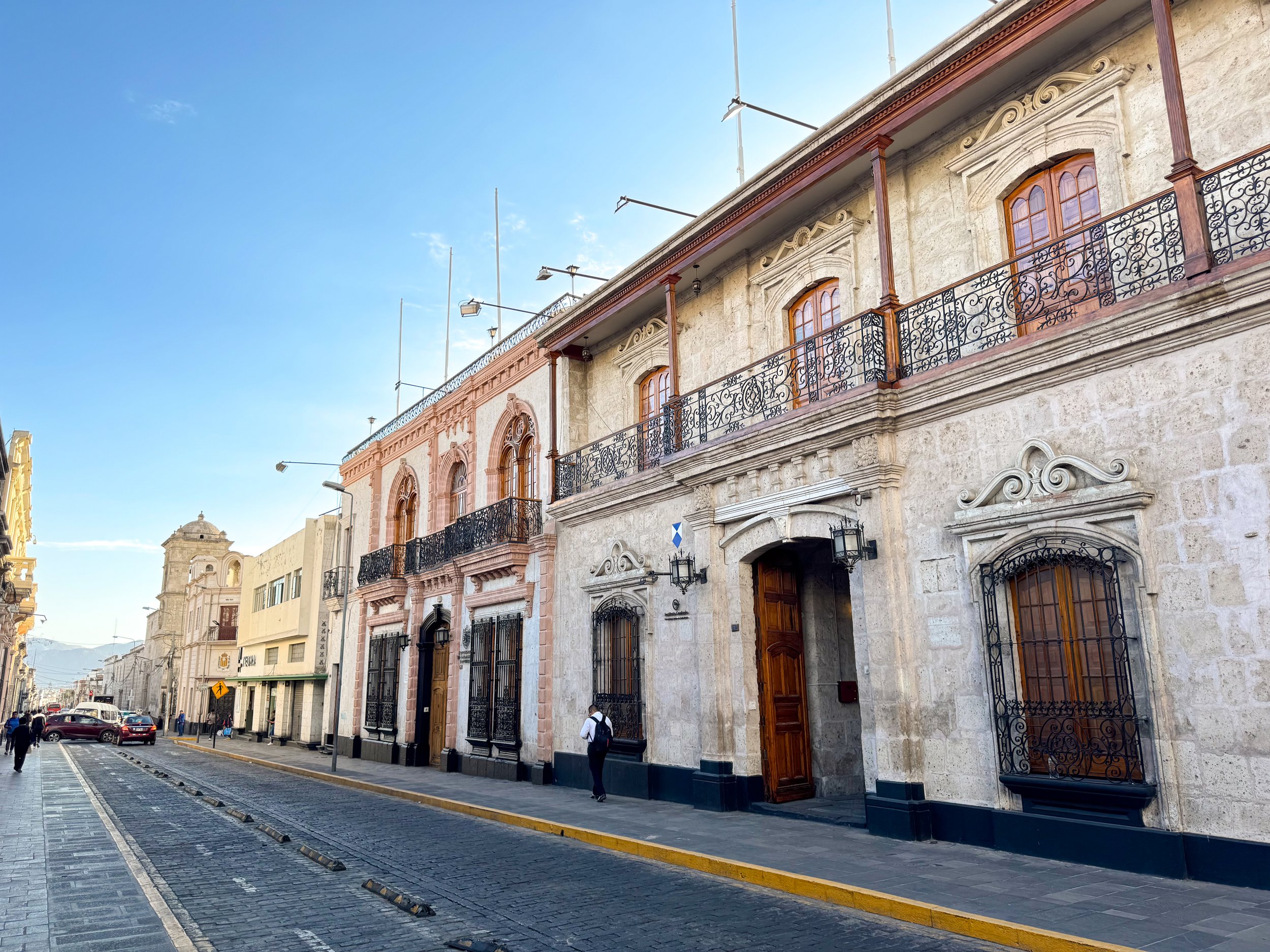
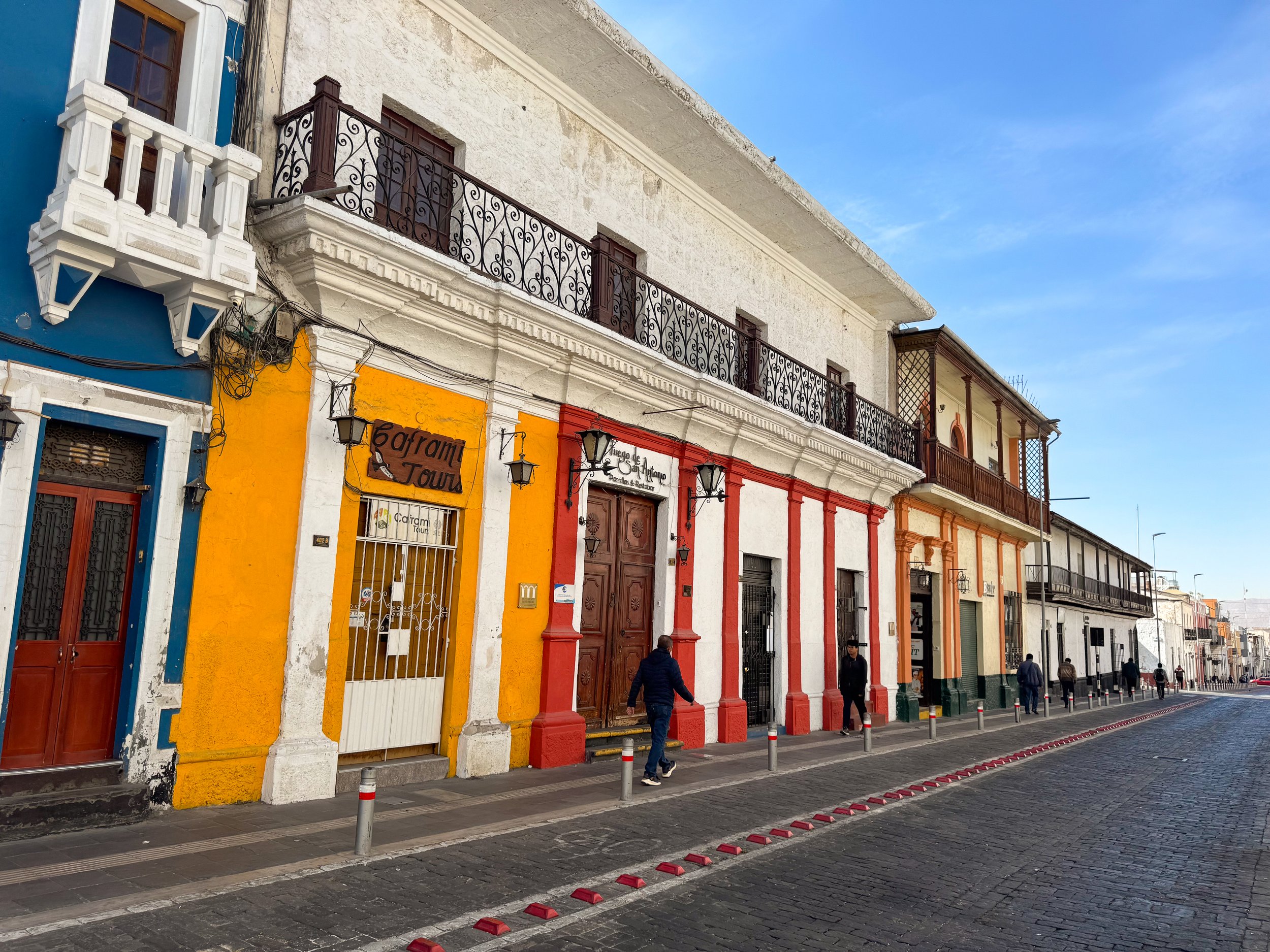
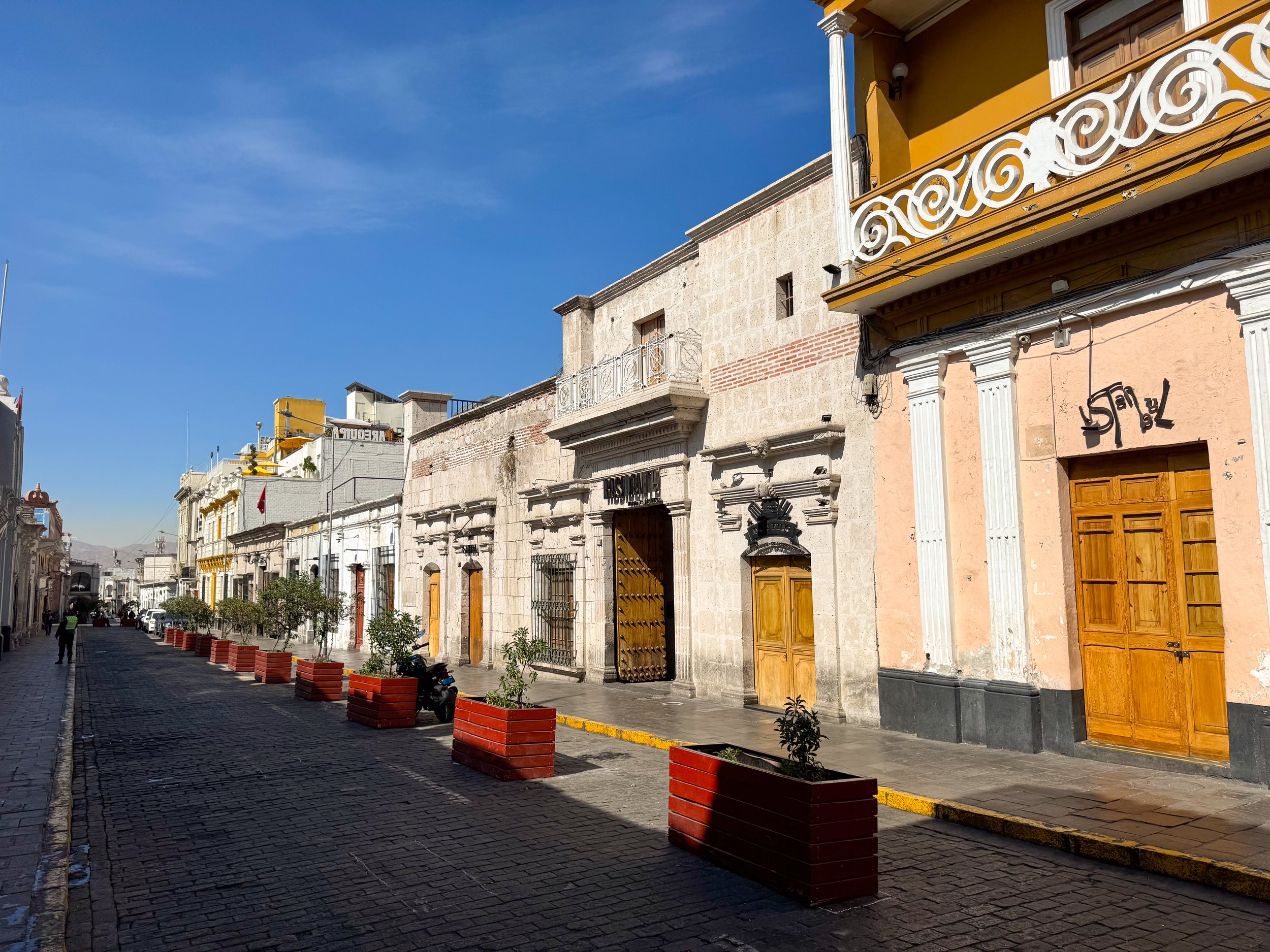
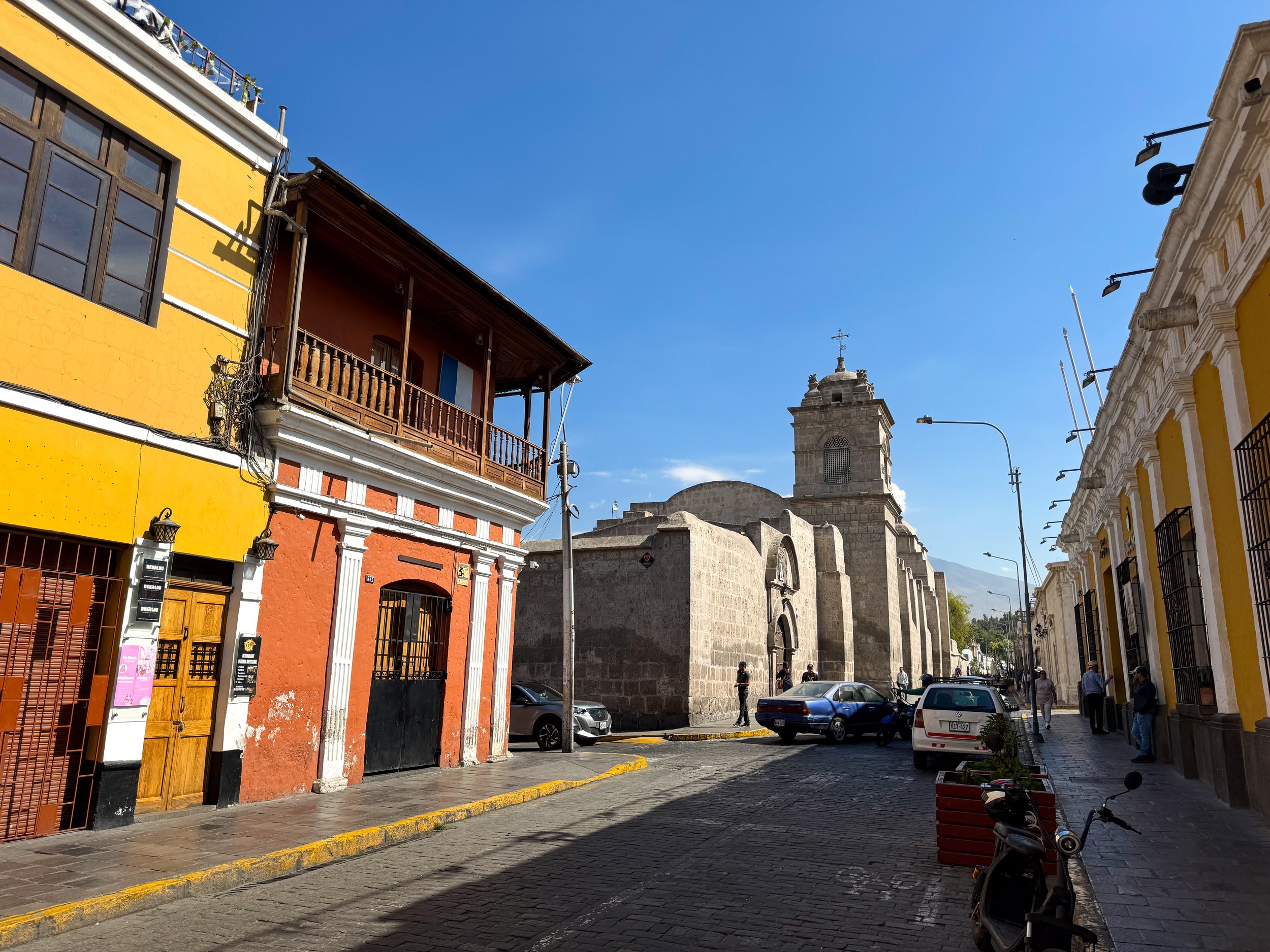
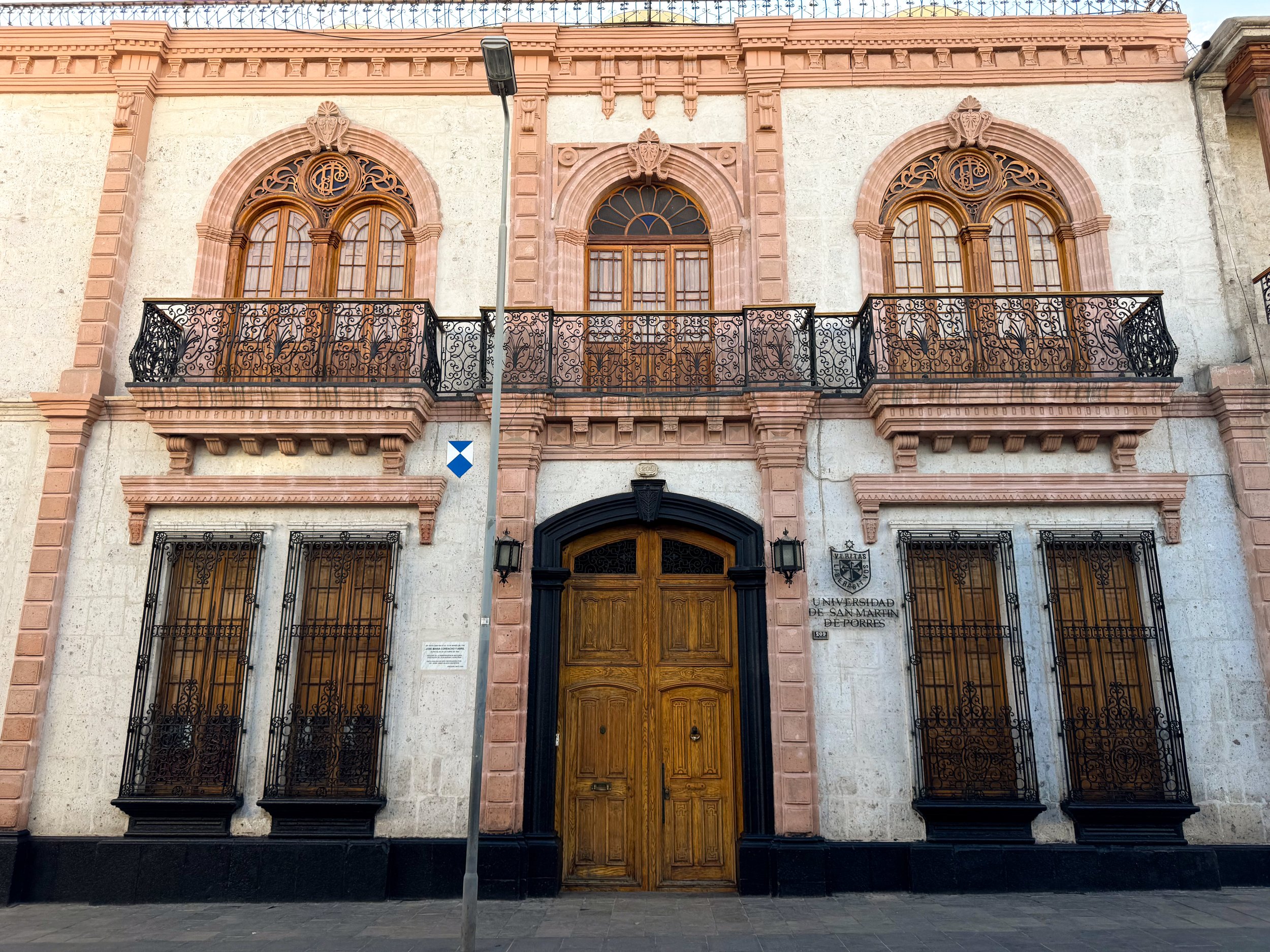
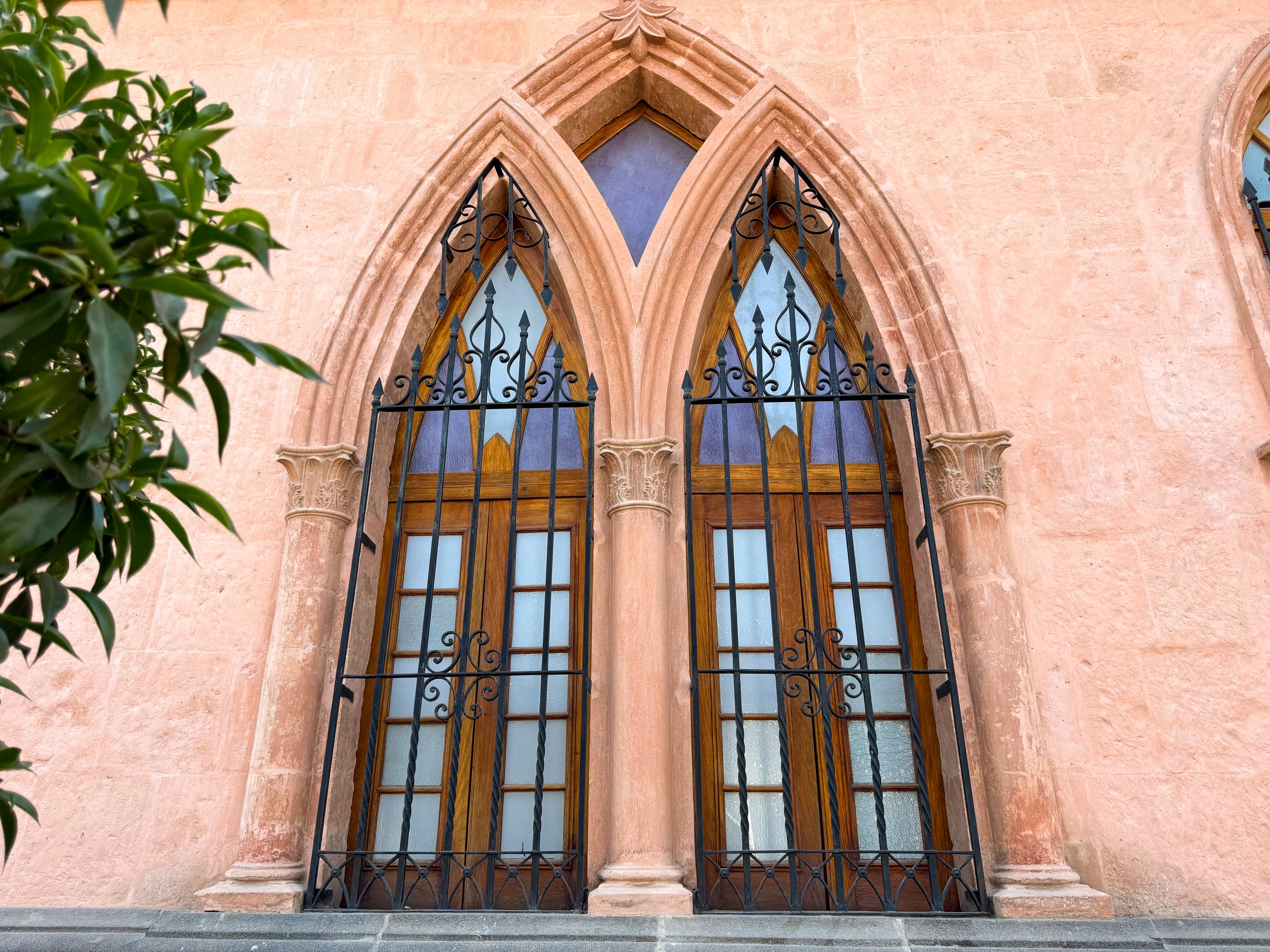
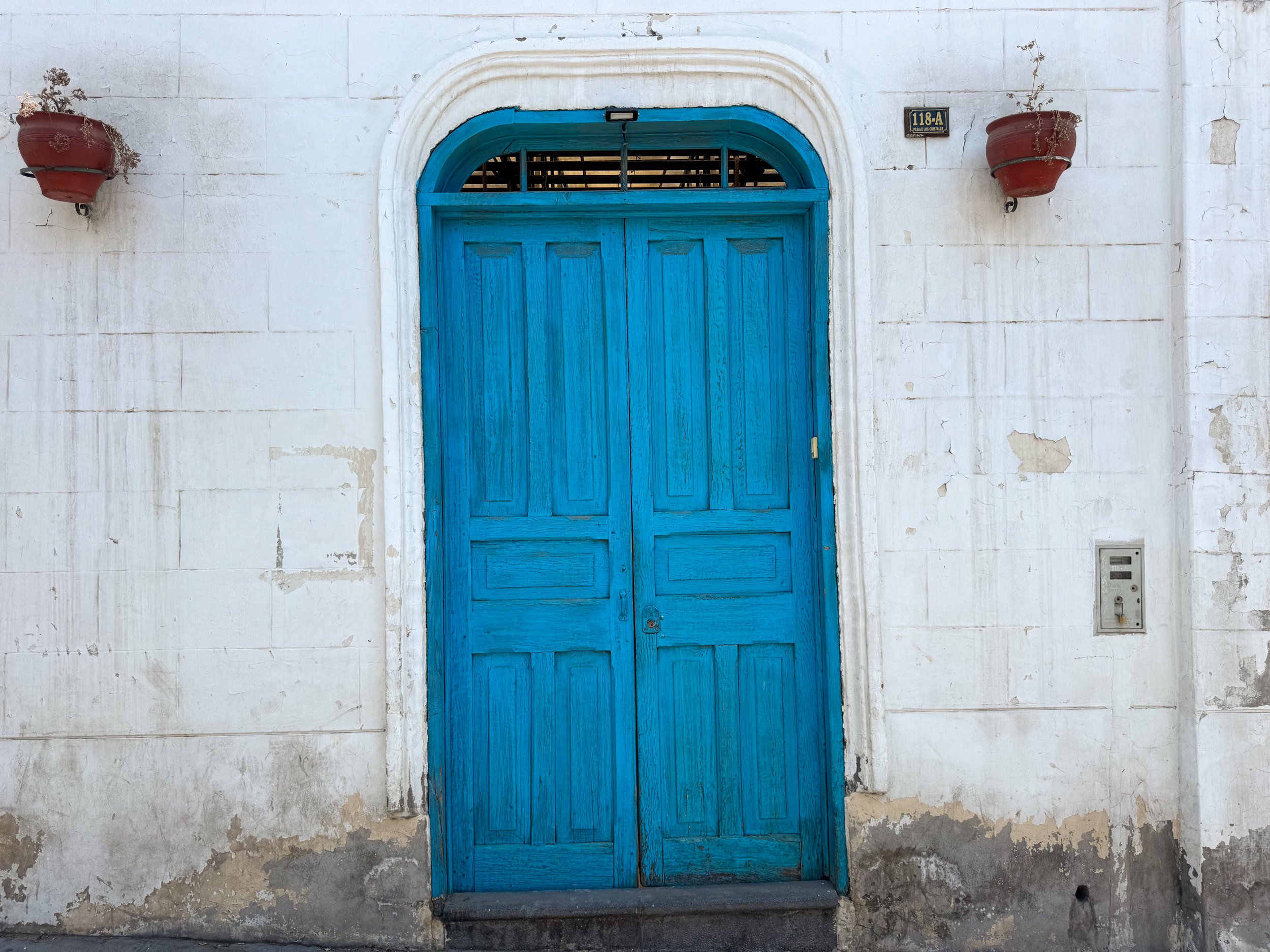
Neighborhoods & Streets
Centro Historico. The historic center of Arequipa centered on the Plaza de Armas with the largest collection of baroque style buildings, museums and landmark sights.
Lázaro Neighborhood. The oldest neighborhood in Arequipa with white stone walls, cobblestone streets and a small central plaza with cafes and bars.
Yanahuara Neighborhood. A neighborhood across the river from the Centro Historico with views overlooking the city and volcanos.
Calle Santa Catalina. A street through the Centro Historico with restaurants, cafes, bars and shops selling alpaca clothes and accessories.
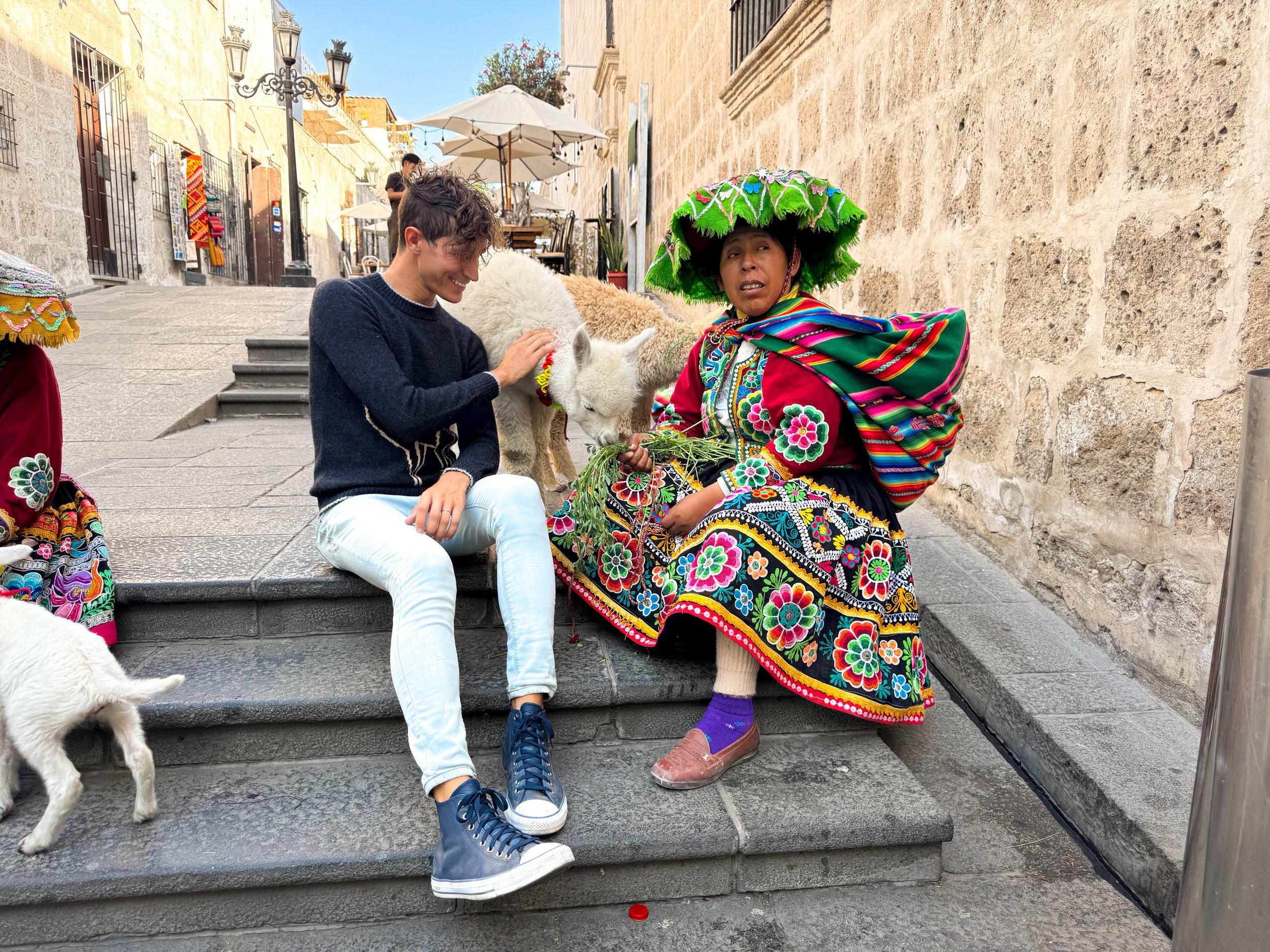
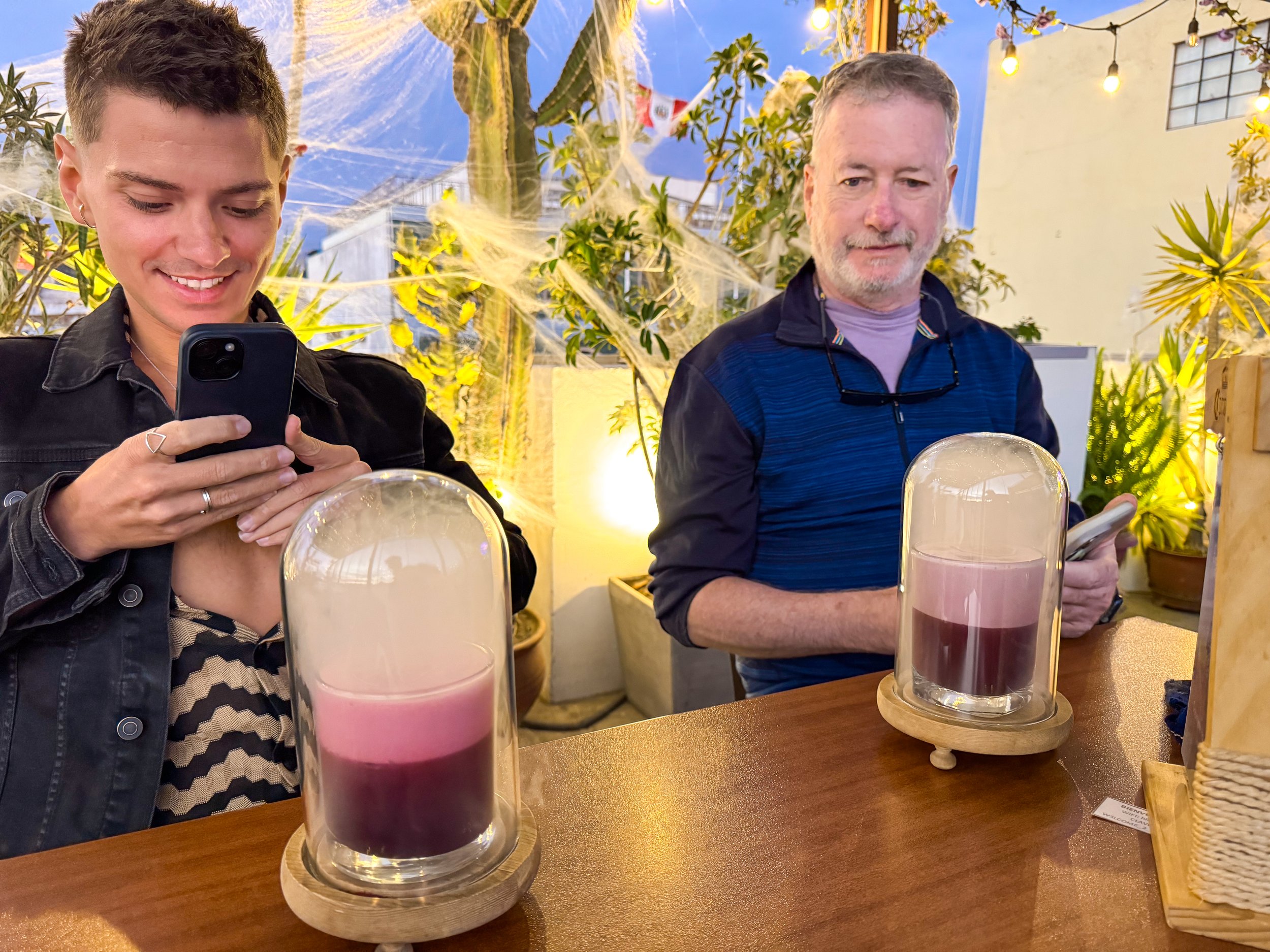
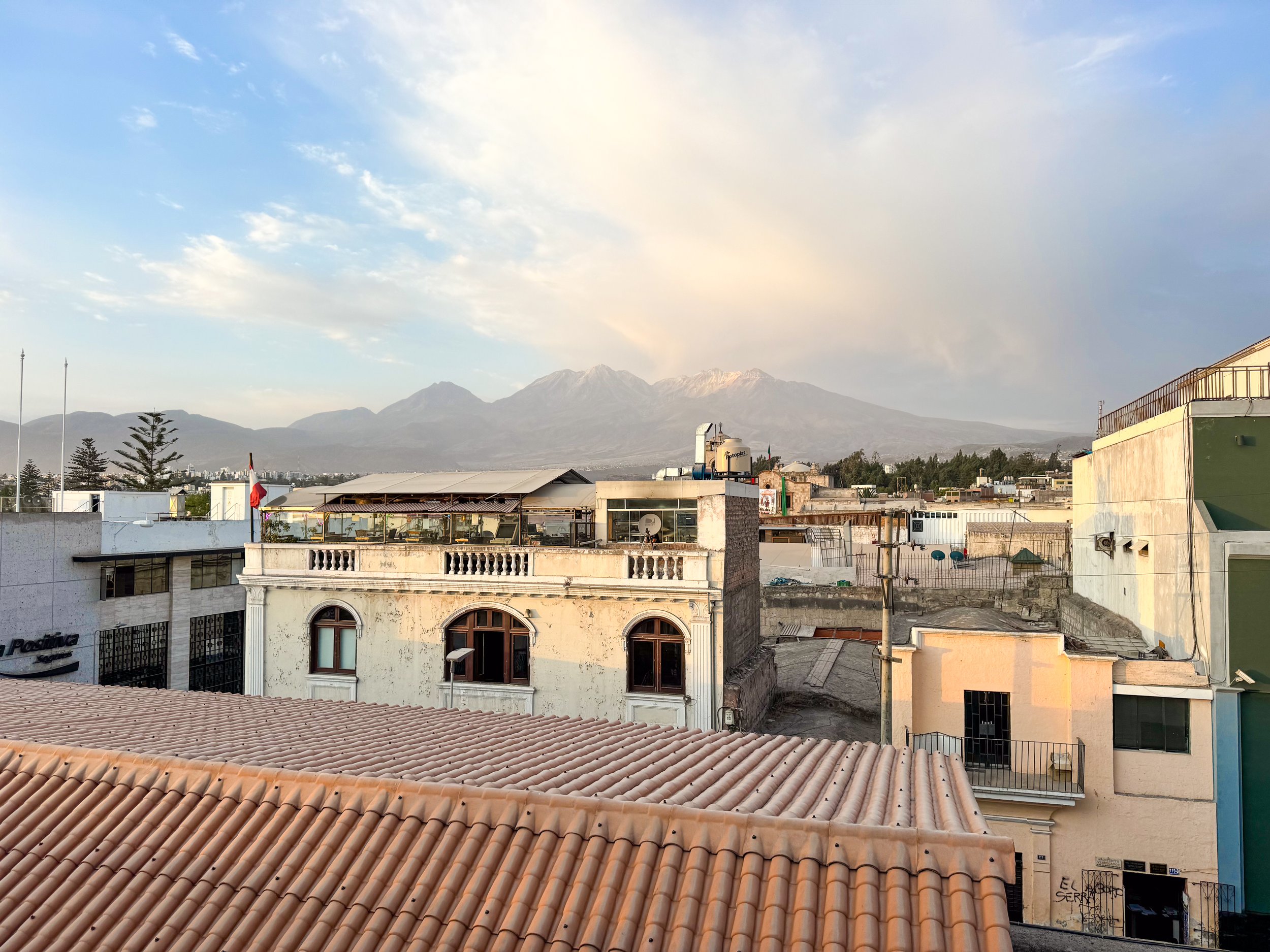
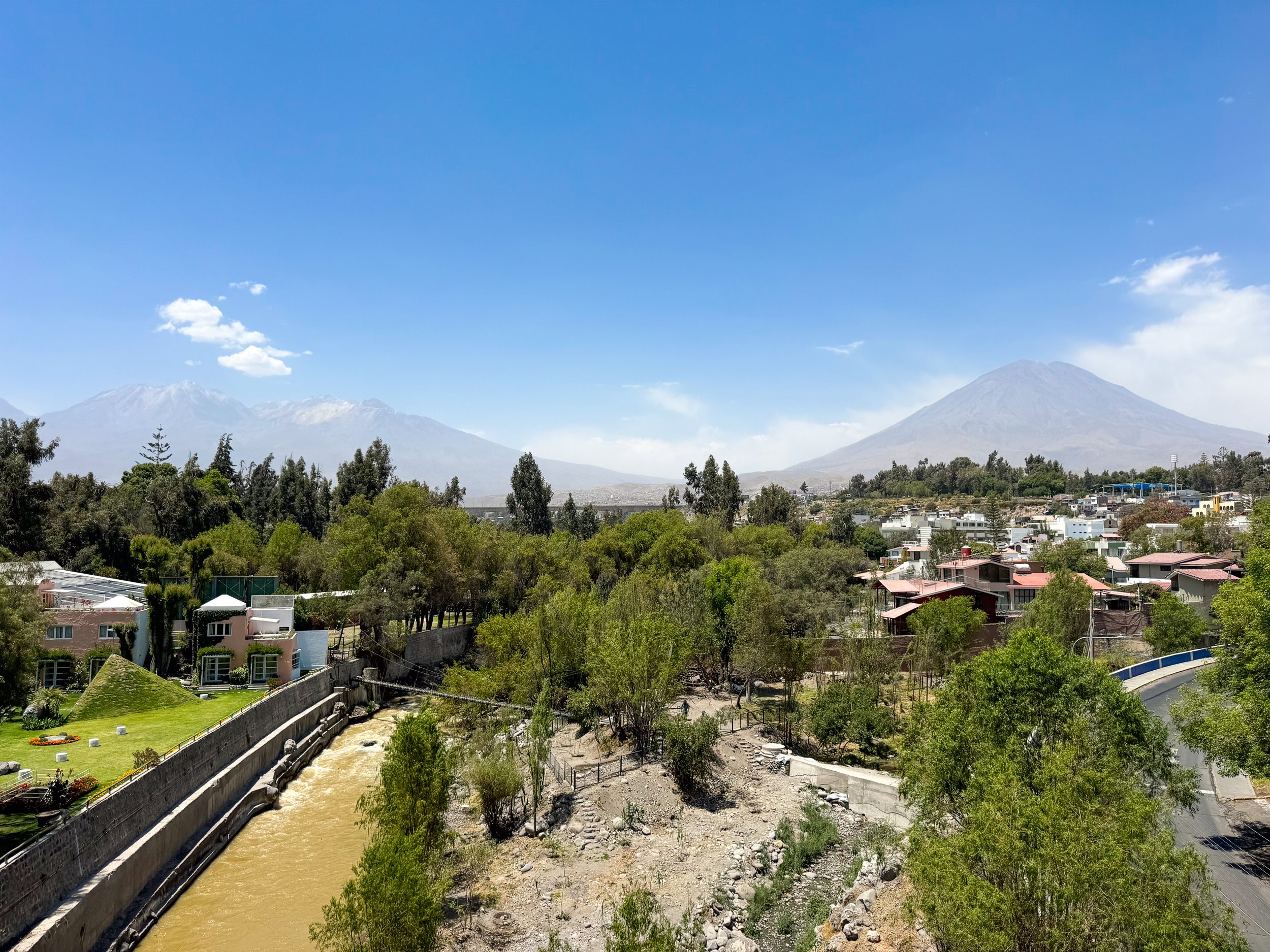
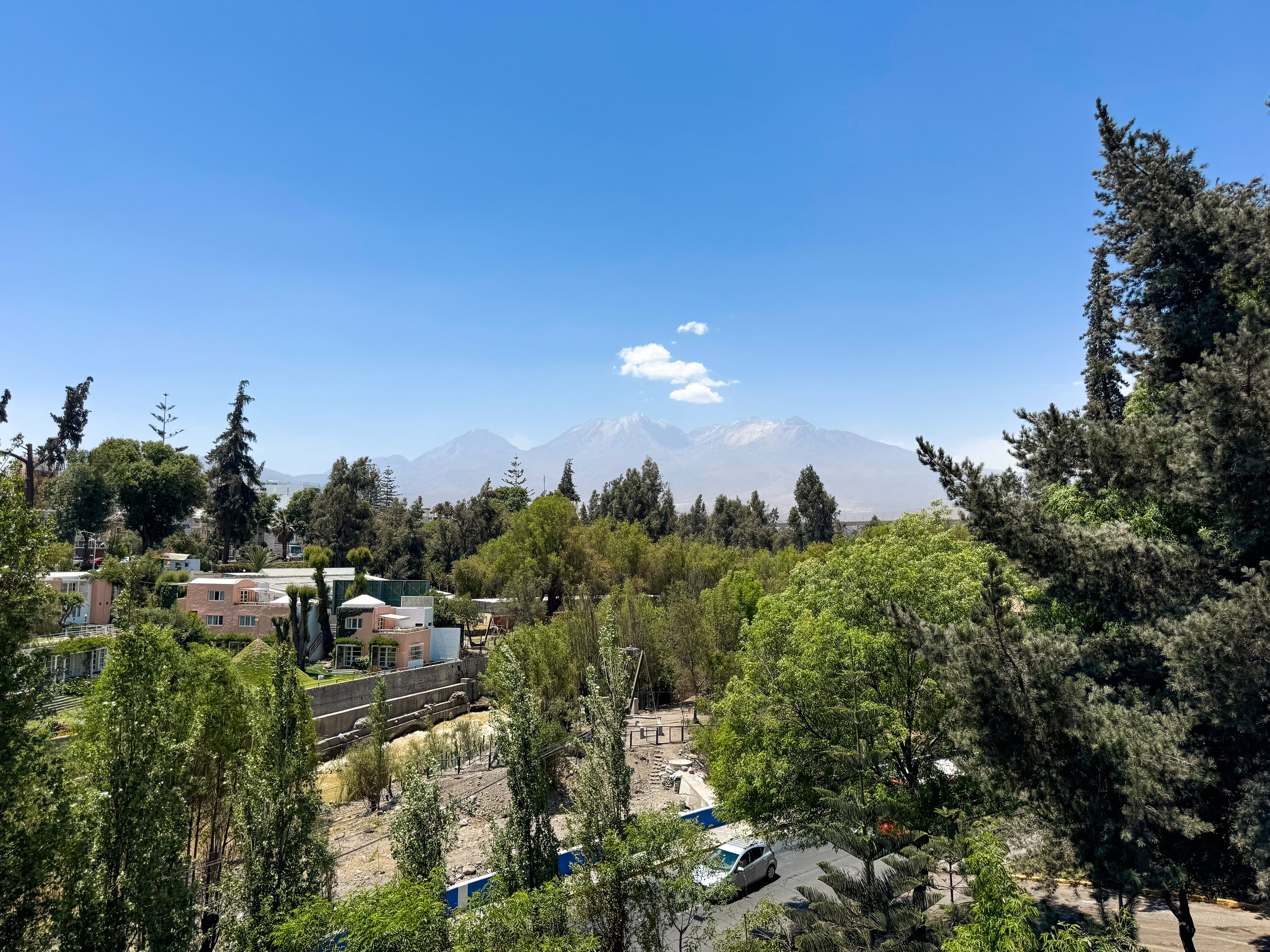
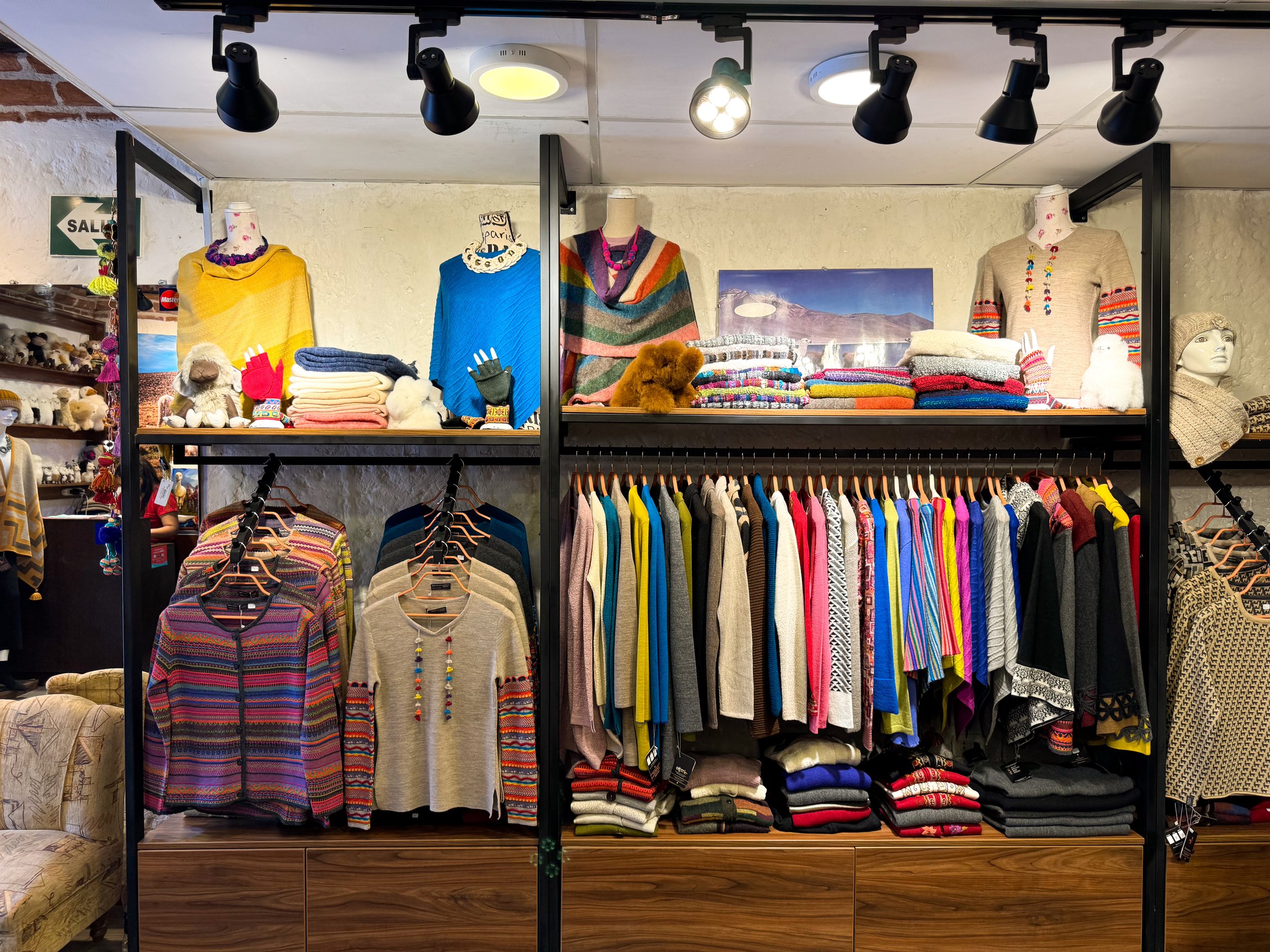
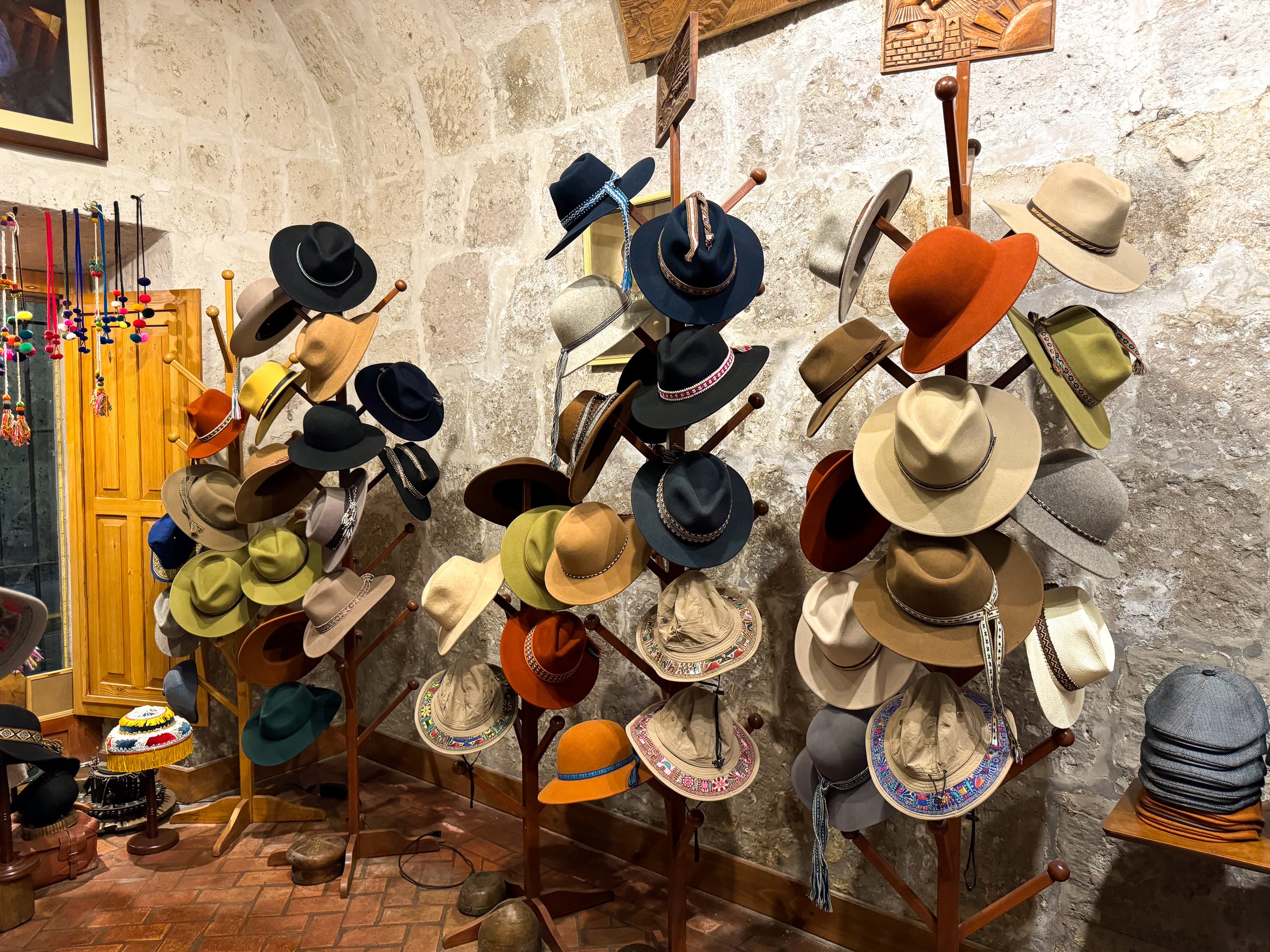
Things to Do
Pose with the Alpaca Ladies. A group of indigenous women dressed in traditional clothing walking baby alpacas. Pose with them and the alpaca for a small tip. When posing for photo, make sure to top each woman individually.
Puente Grau. Walk across the Puente Grau bridge with views of the Misti and Chachani volcanoes.
Eat & Drink at Roof Top Restaurant. Many restaurants have rooftop terraces and bars across Arequipa. They’re popular for leisurely breakfasts, enjoying views of the city, volcanos and sunsets.
Alpaca Shopping. Go shopping for alpaca, llama or vicuna fur clothes, accessories or home goods.
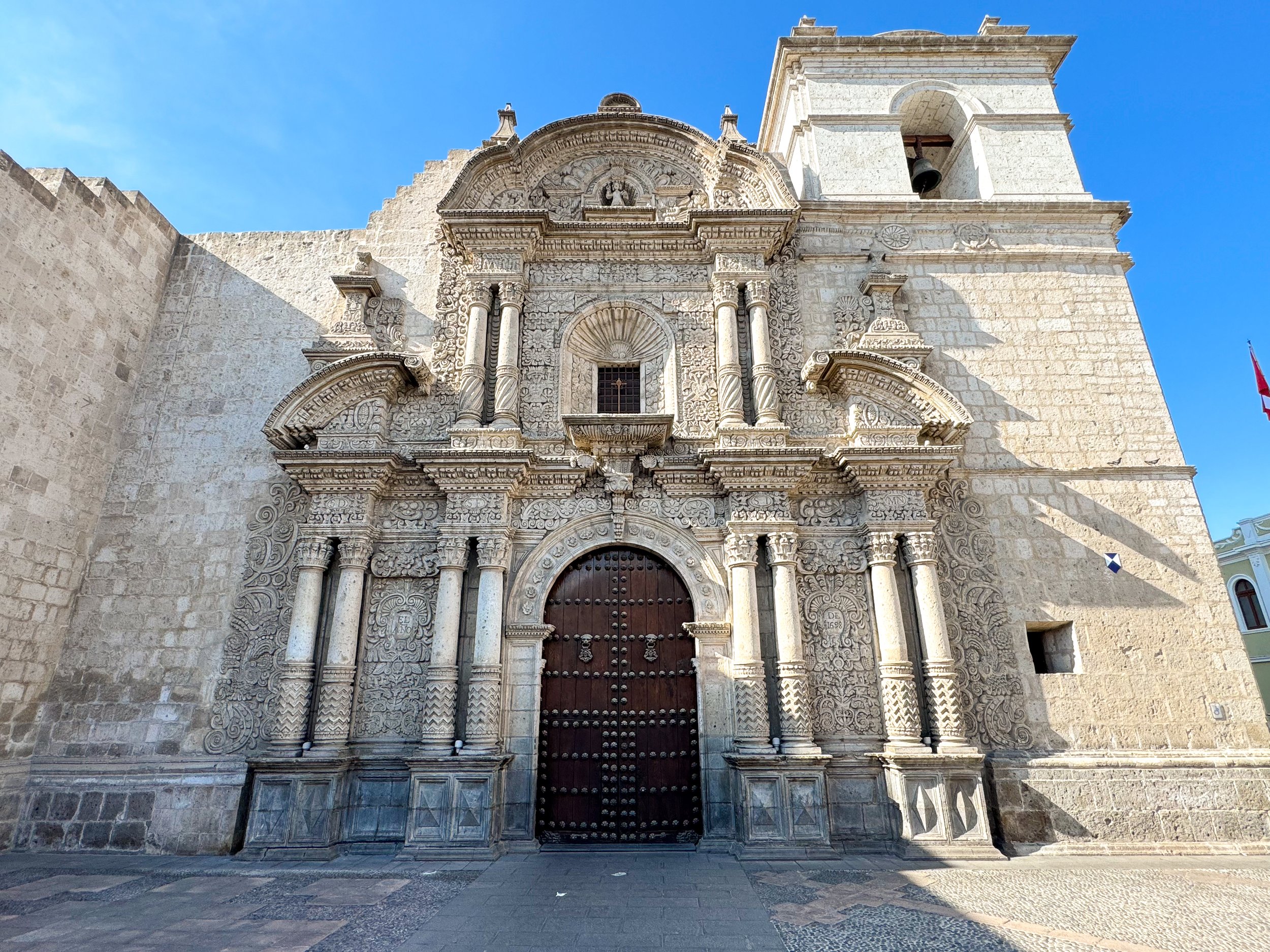
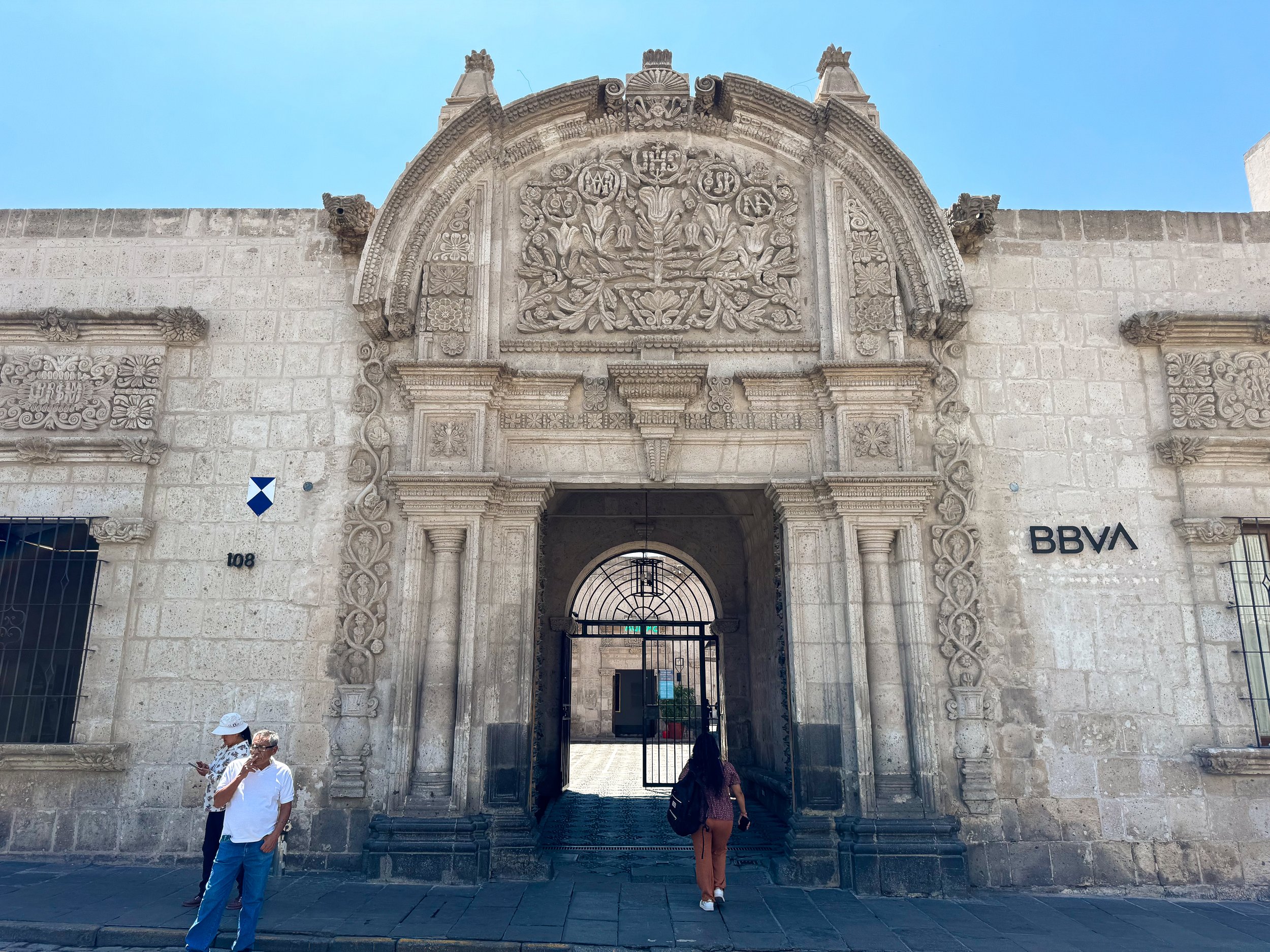

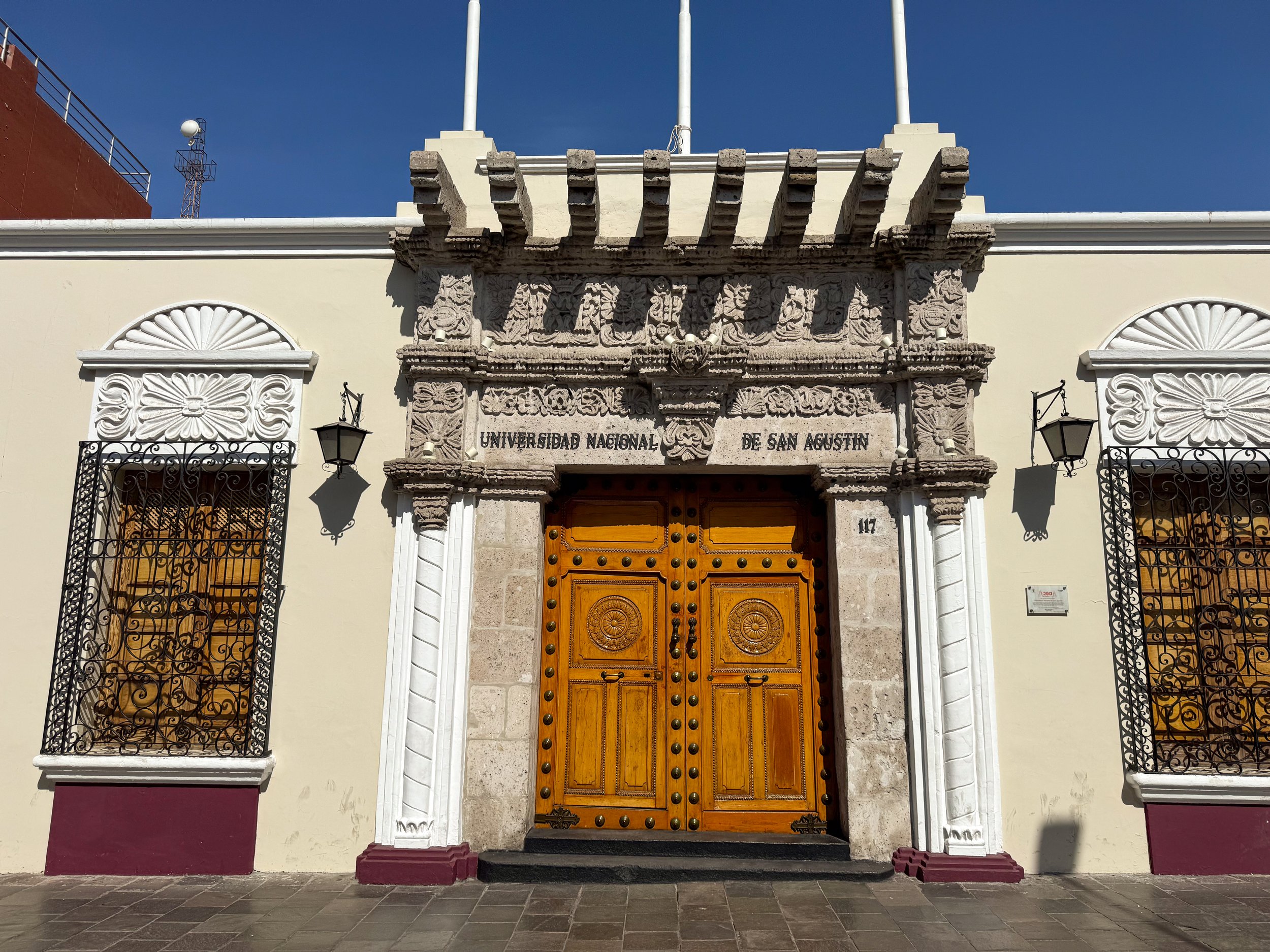
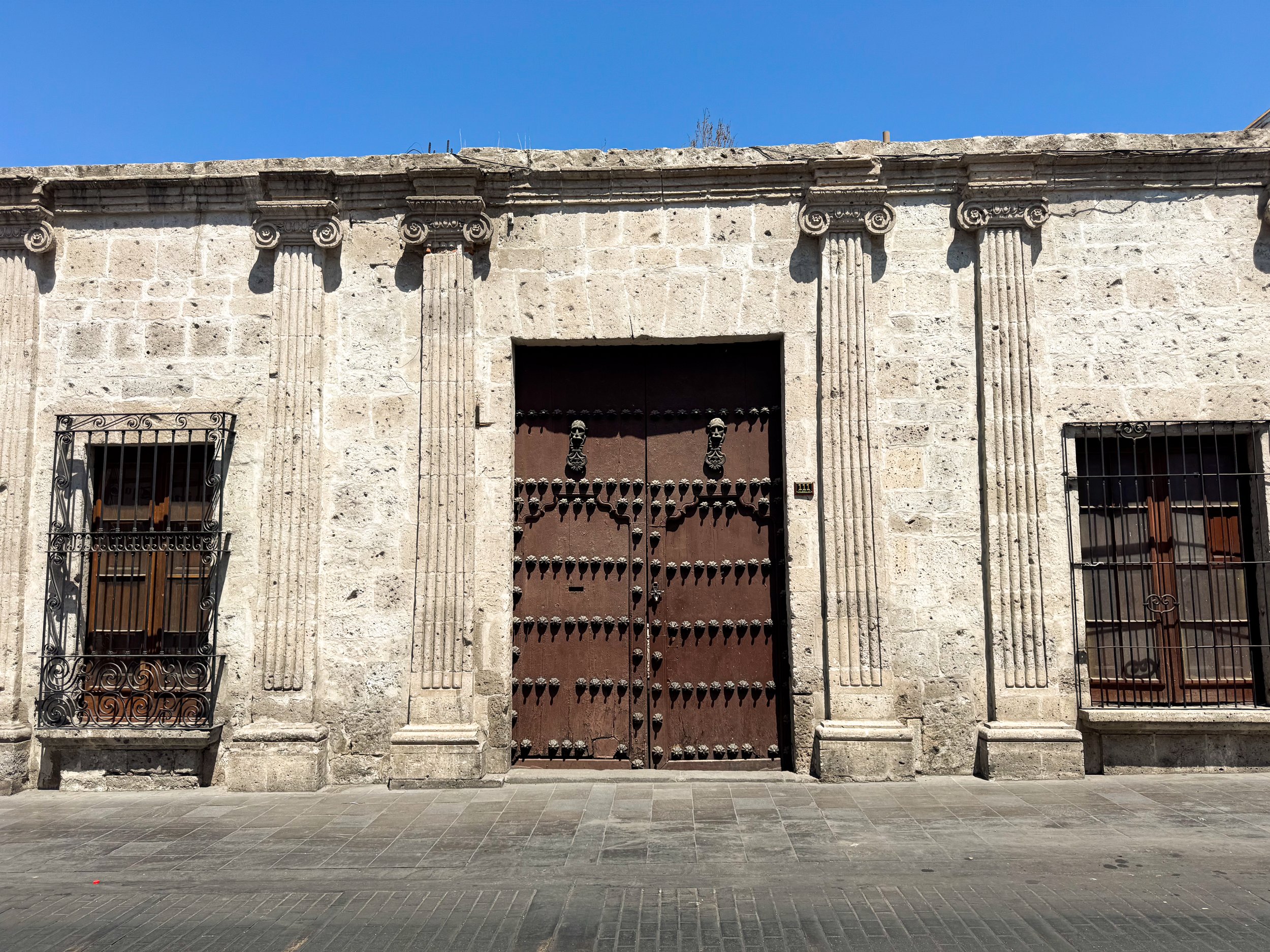
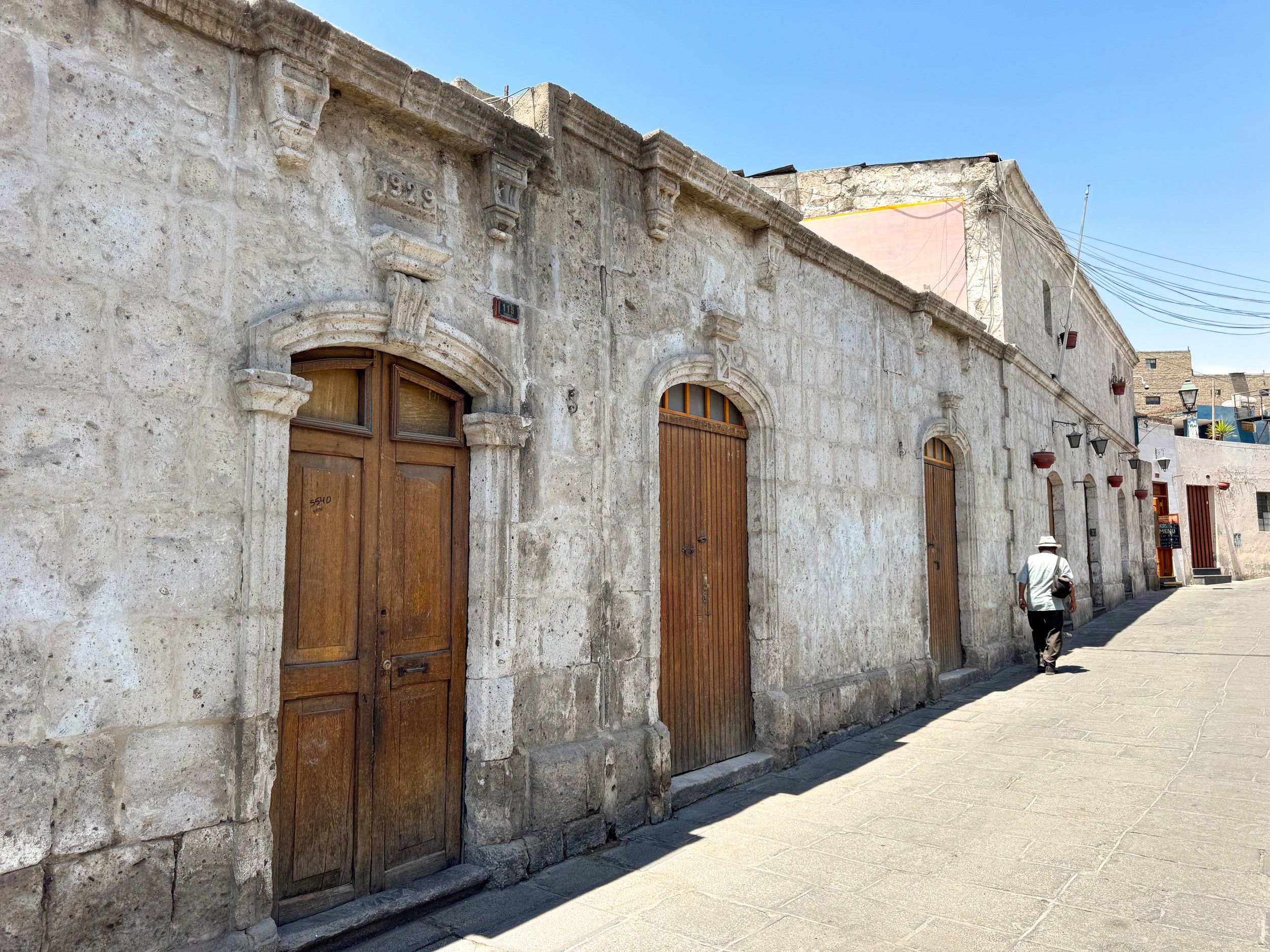
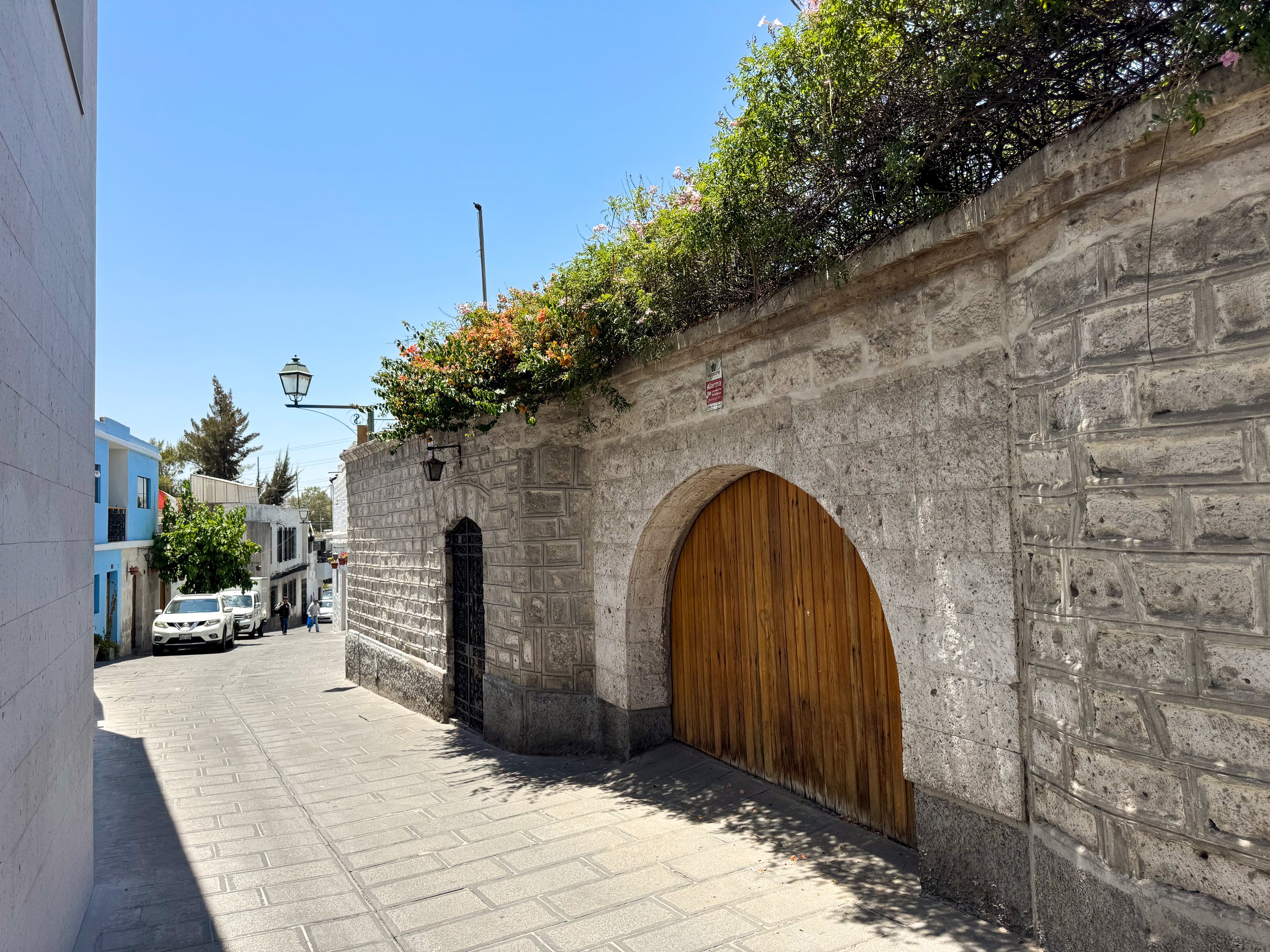
Admire The White City. Arequipa is called “The White City” for its buildings made from white volcanic stone and their ornate baroque style facades. We walked around the city admiring the architecture and touring landmark buildings. There are also walking tours in the Plaza de Armas based on tips.
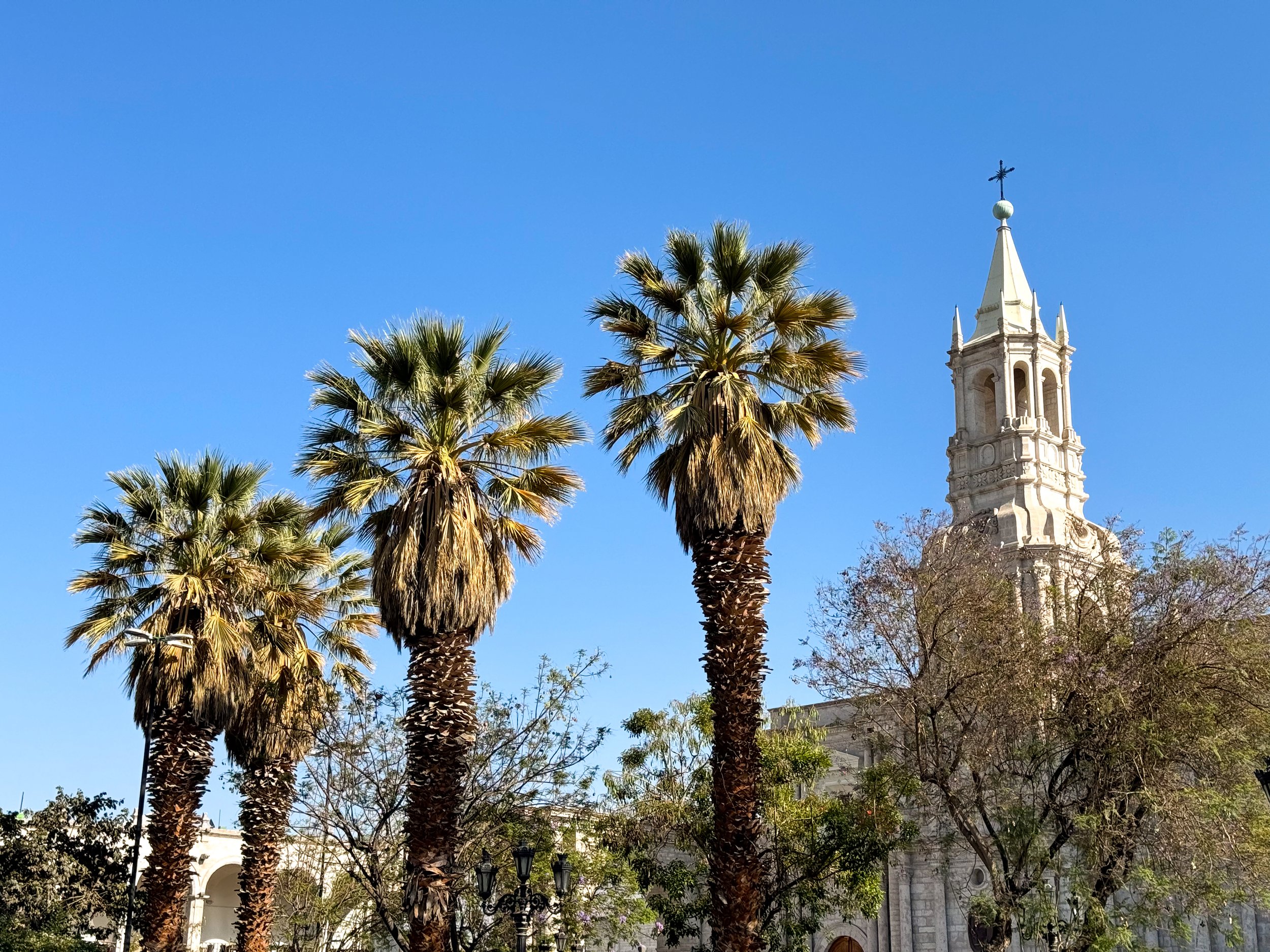
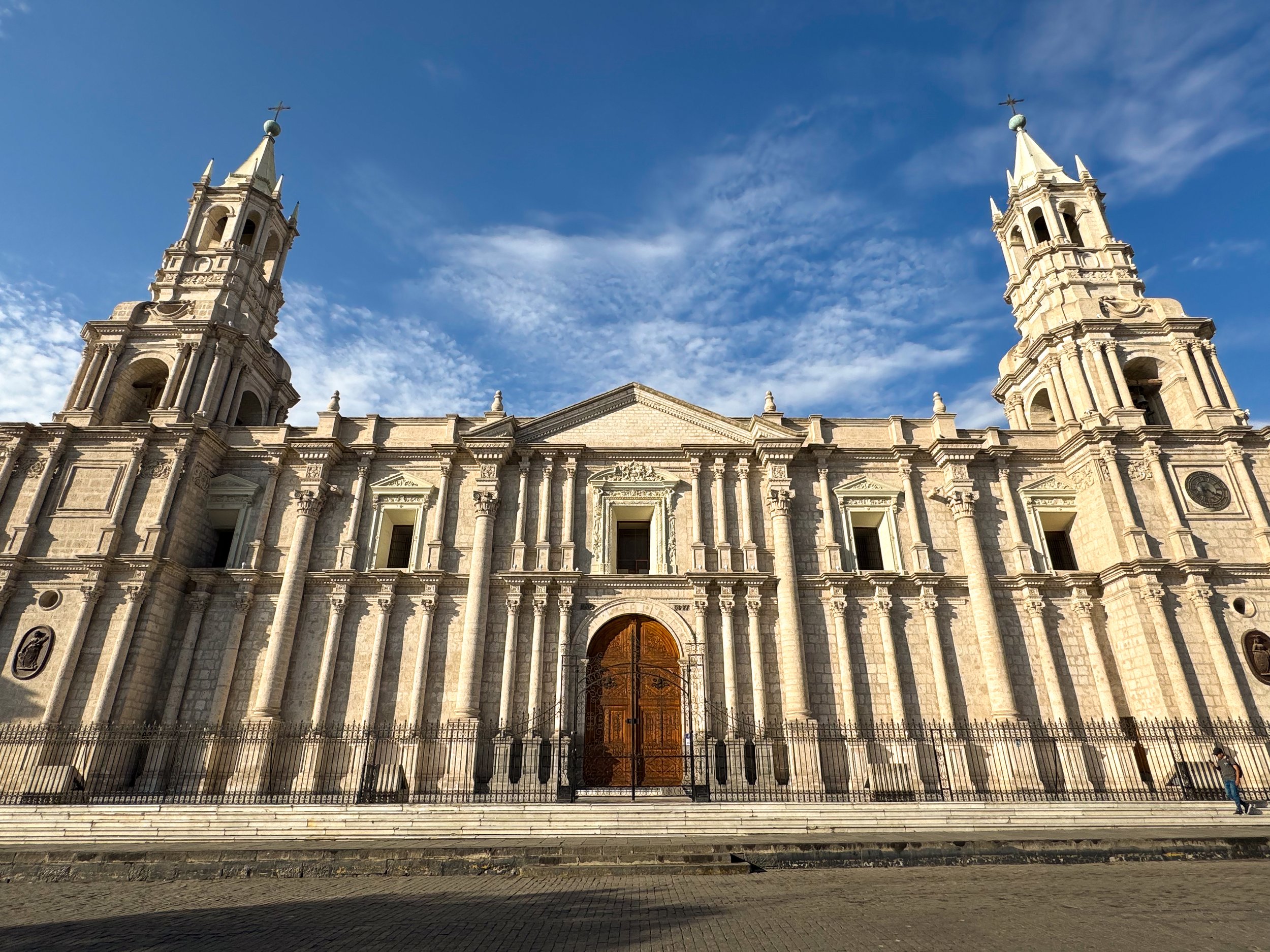
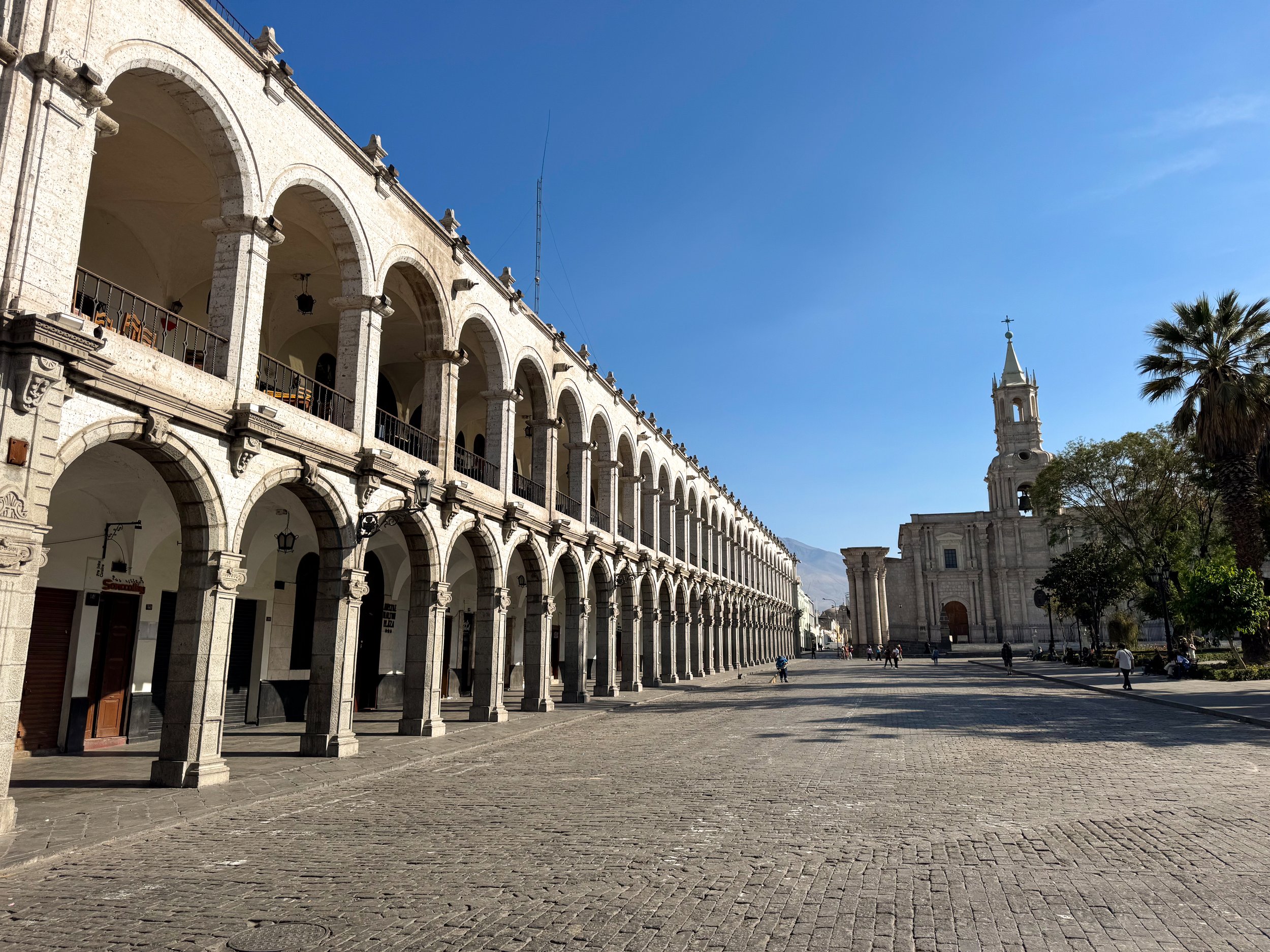
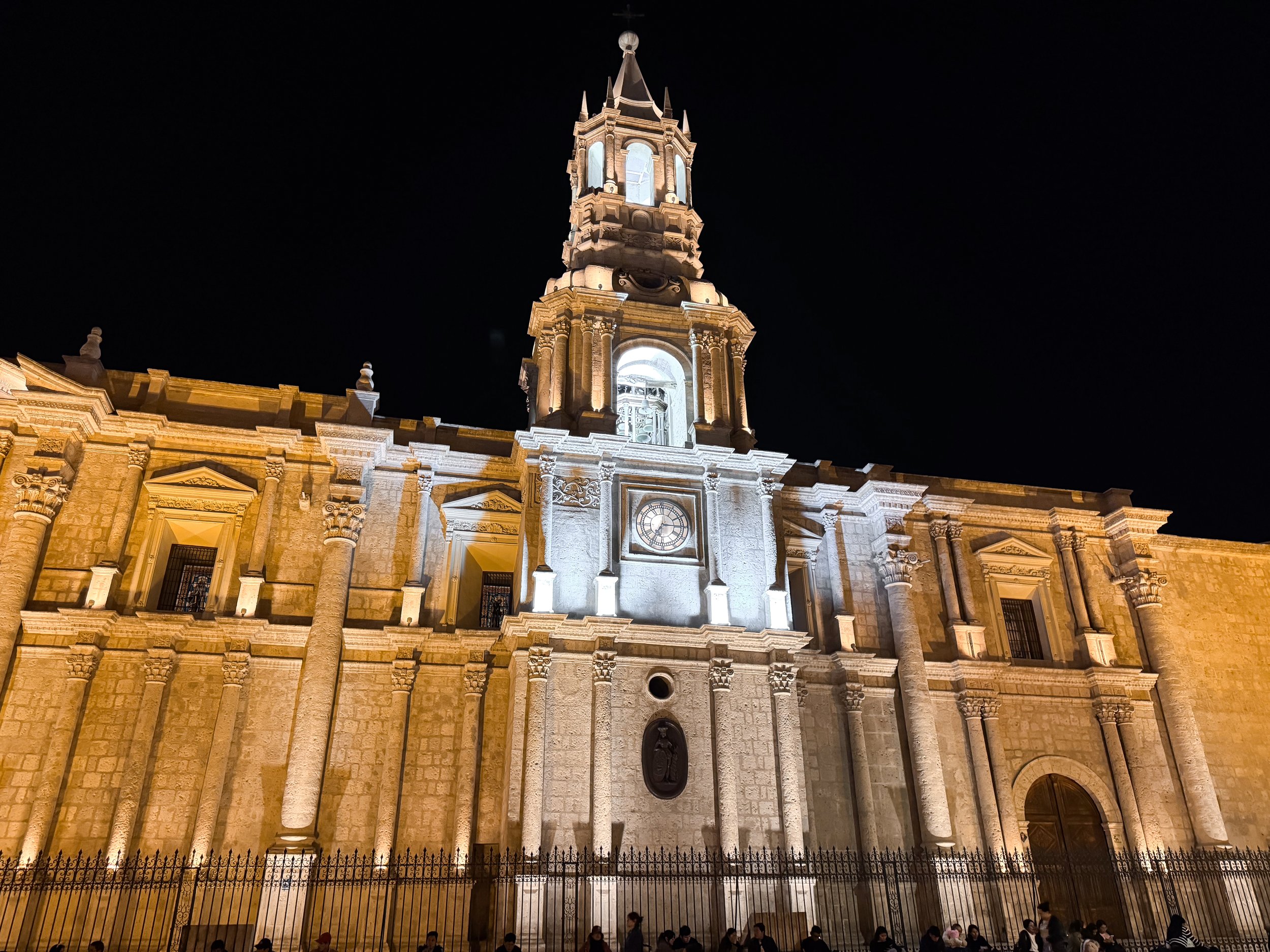
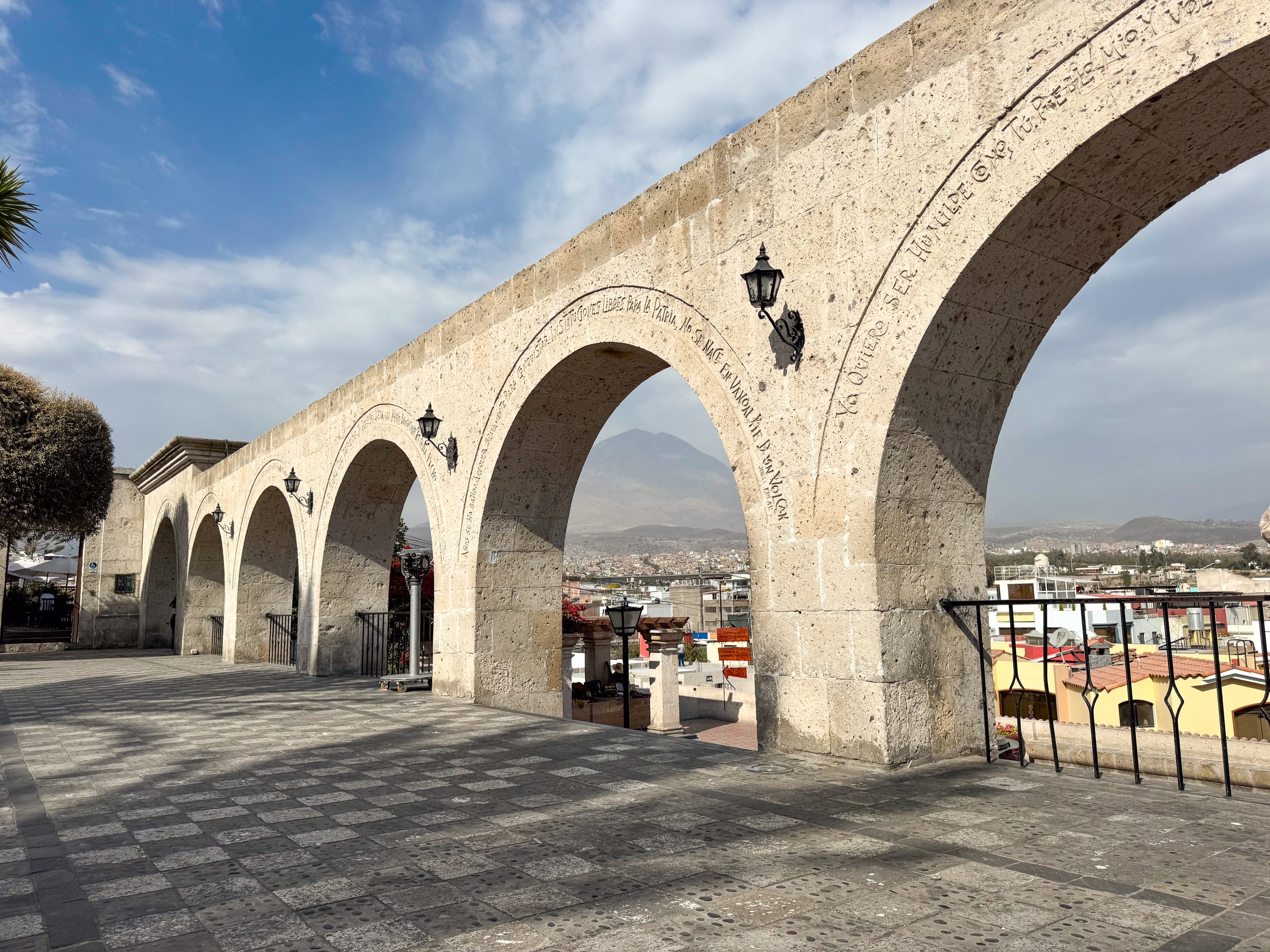
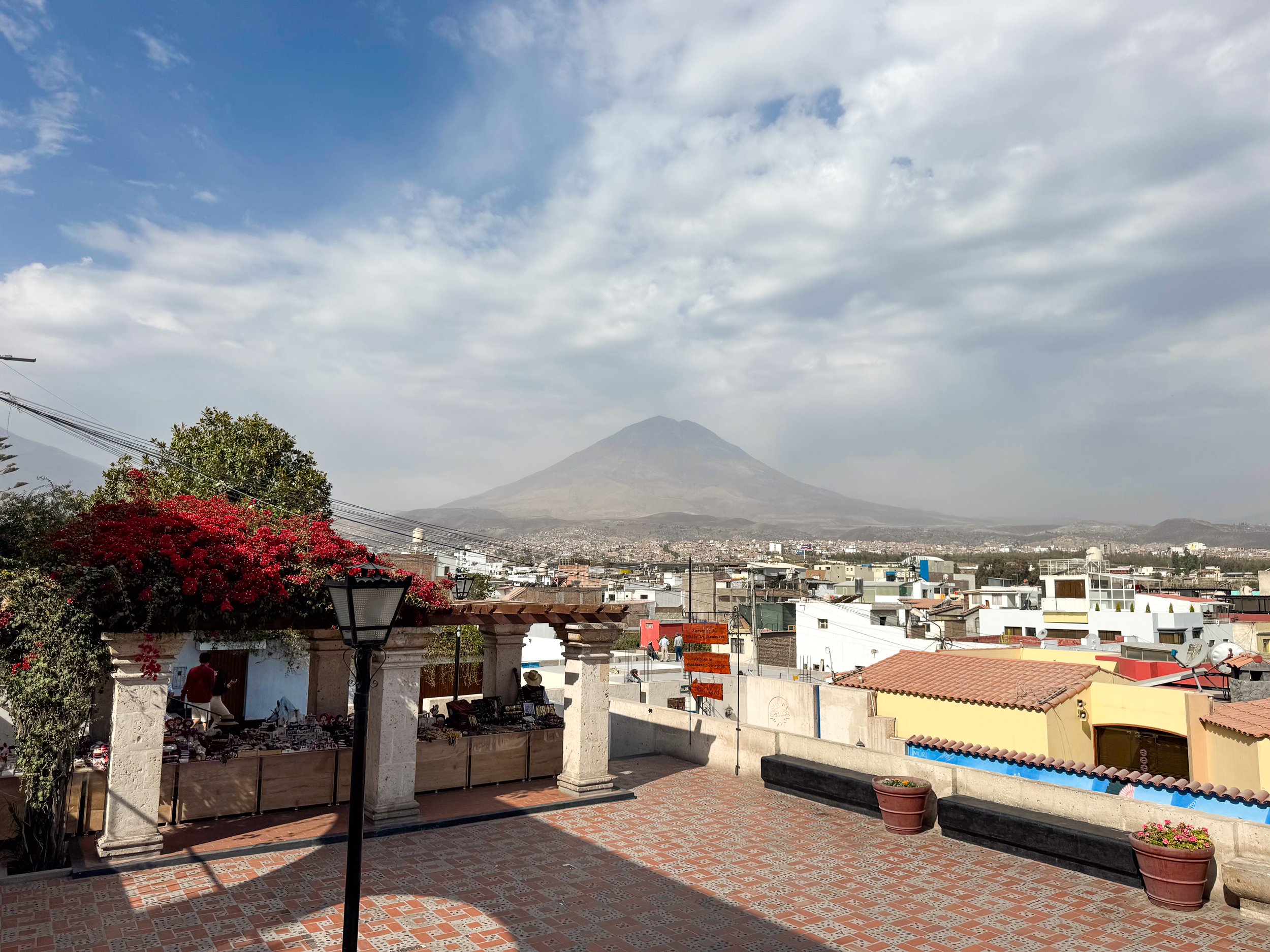
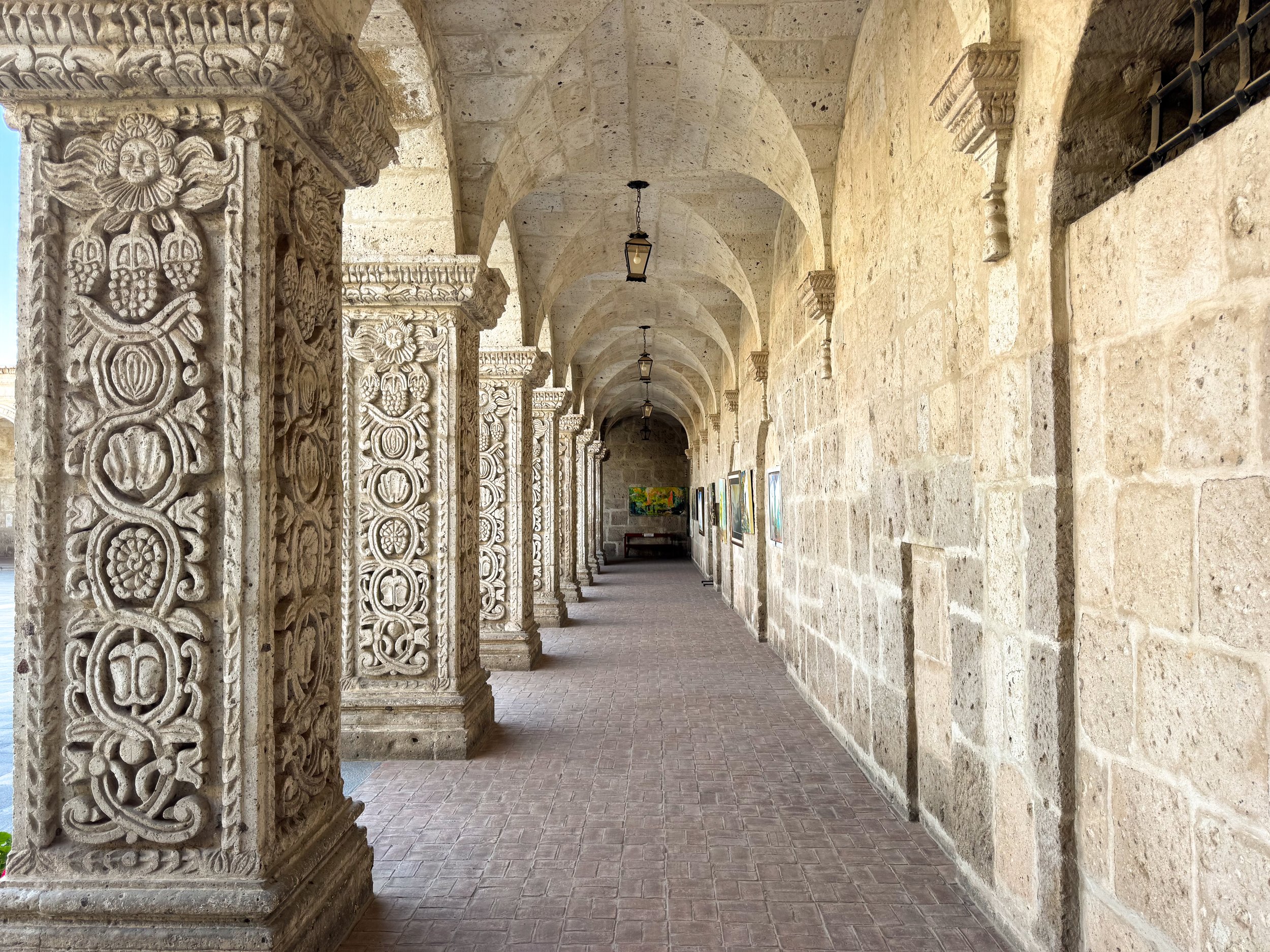
Sights
Plaza de Armas. A palm lined plaza at the heart of Arequipa’s historic neighborhood surrounded by white arched buildings and centered on the Basilica of Arequipa. It’s a culture center where locals come to relax and the city hosts events like live music and artisan markets.
Basilica of Arequipa. A grand neo-gothic and renaissance style cathedral with two bell towers and ornate masonry built from white volcanic stone.
Cloisters of The Company. Two plazas with ornate white stone cloisters in the historic center of Arequipa home to cafes, bars and clothing stores selling alpaca and vicuña products.
Mirador Yanahuara. A palm lined plaza with an arched wall and lookout over the historic center of Arequipa and the Misti Volcano.
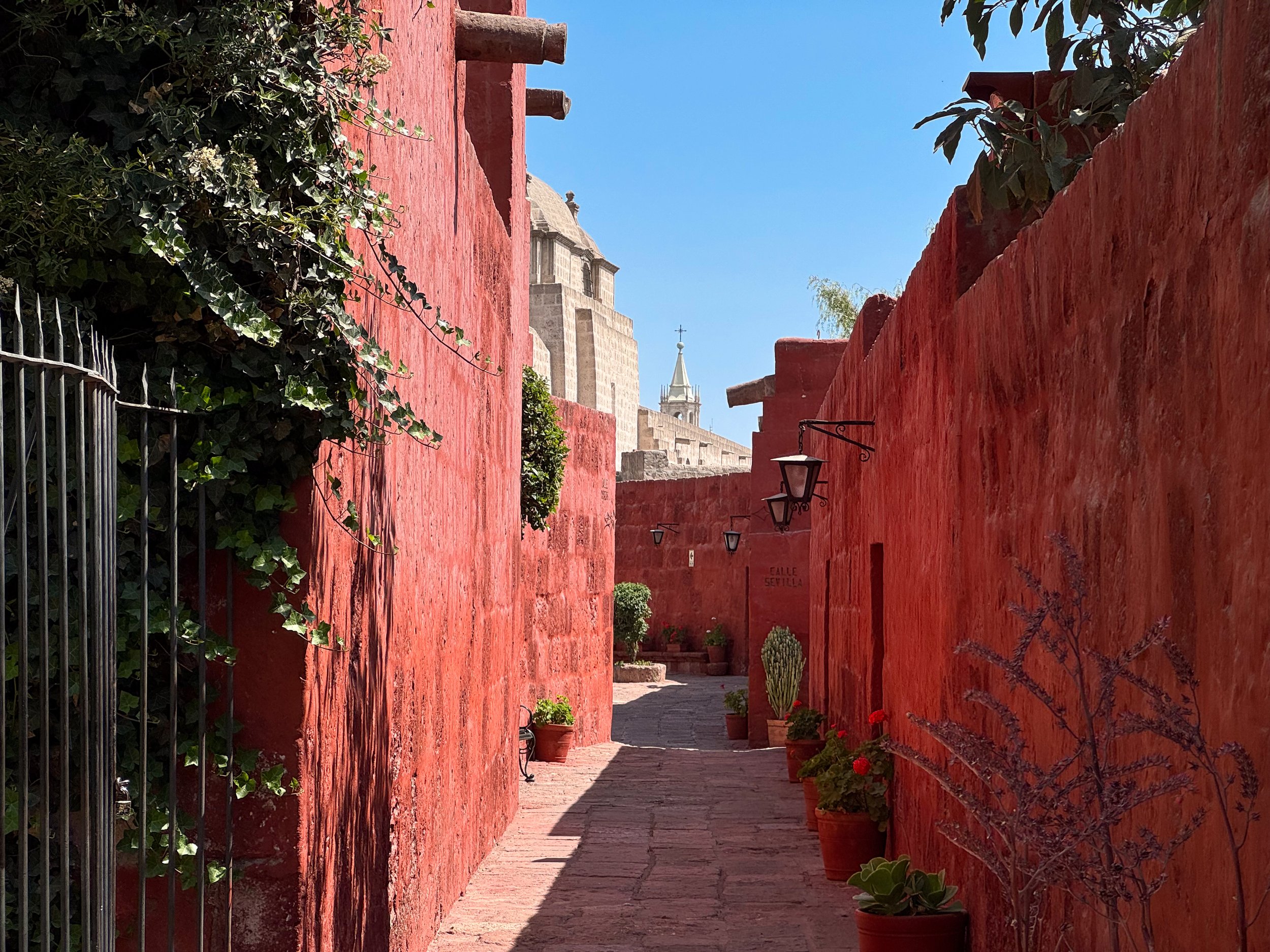
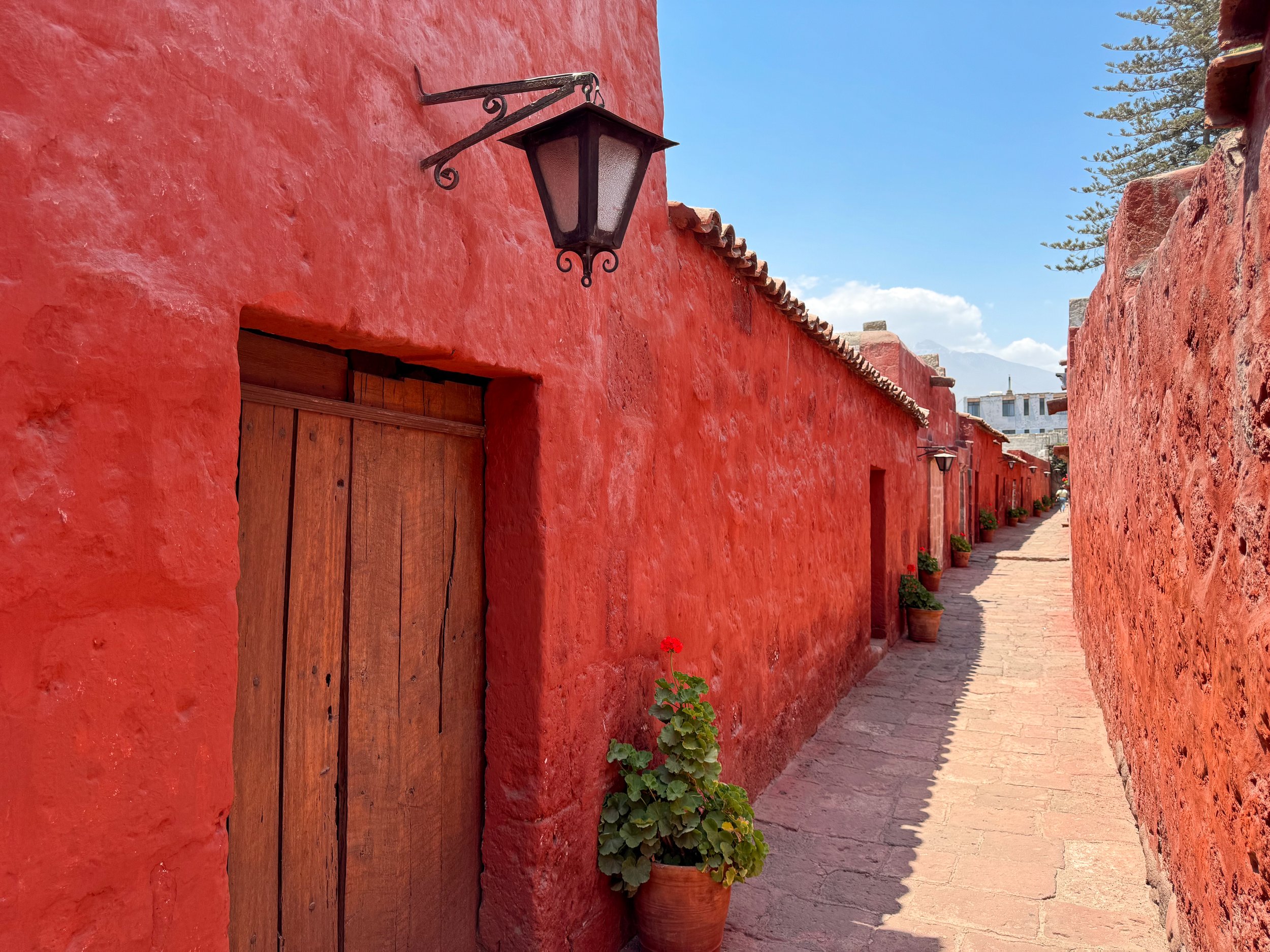
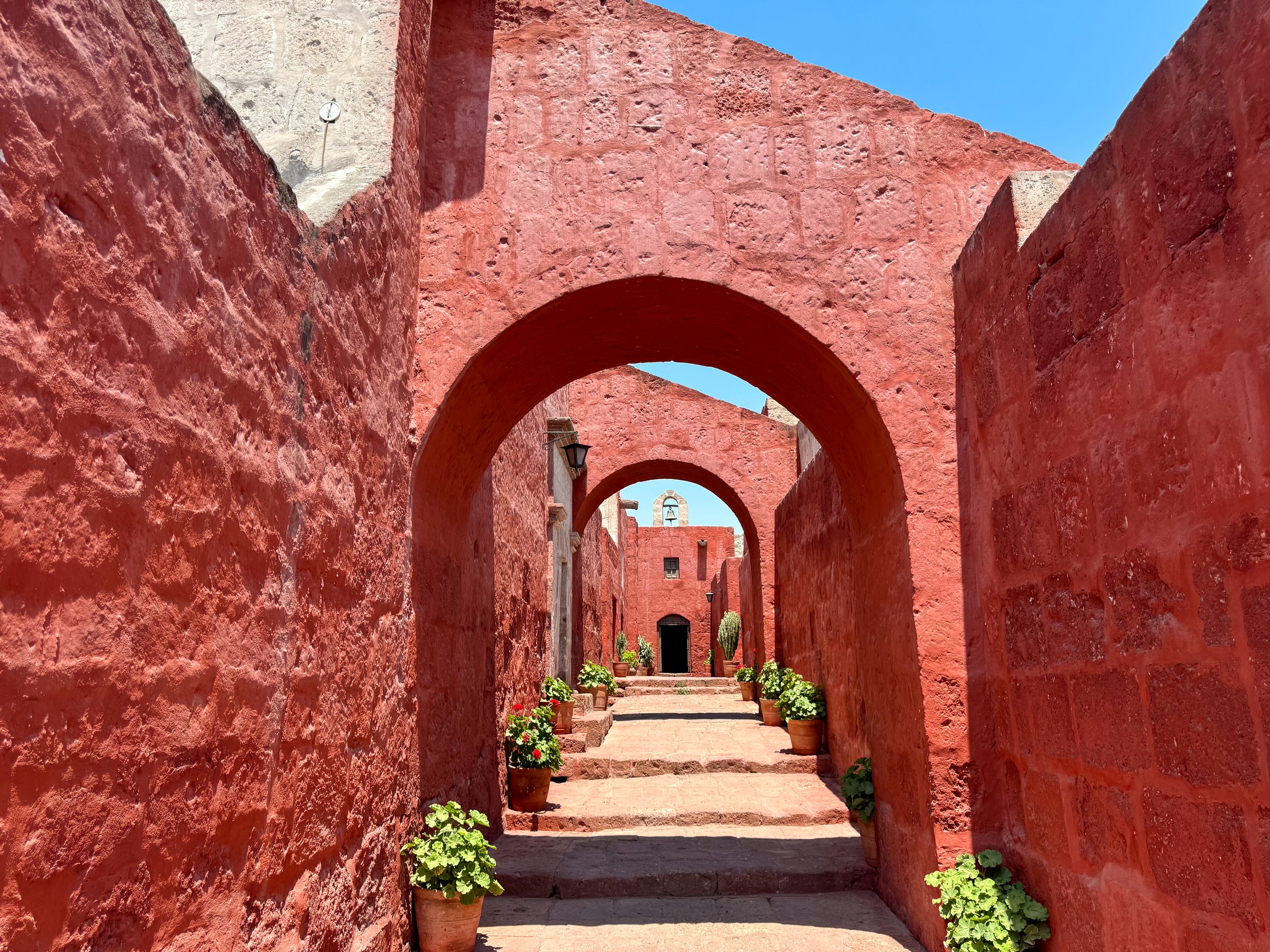
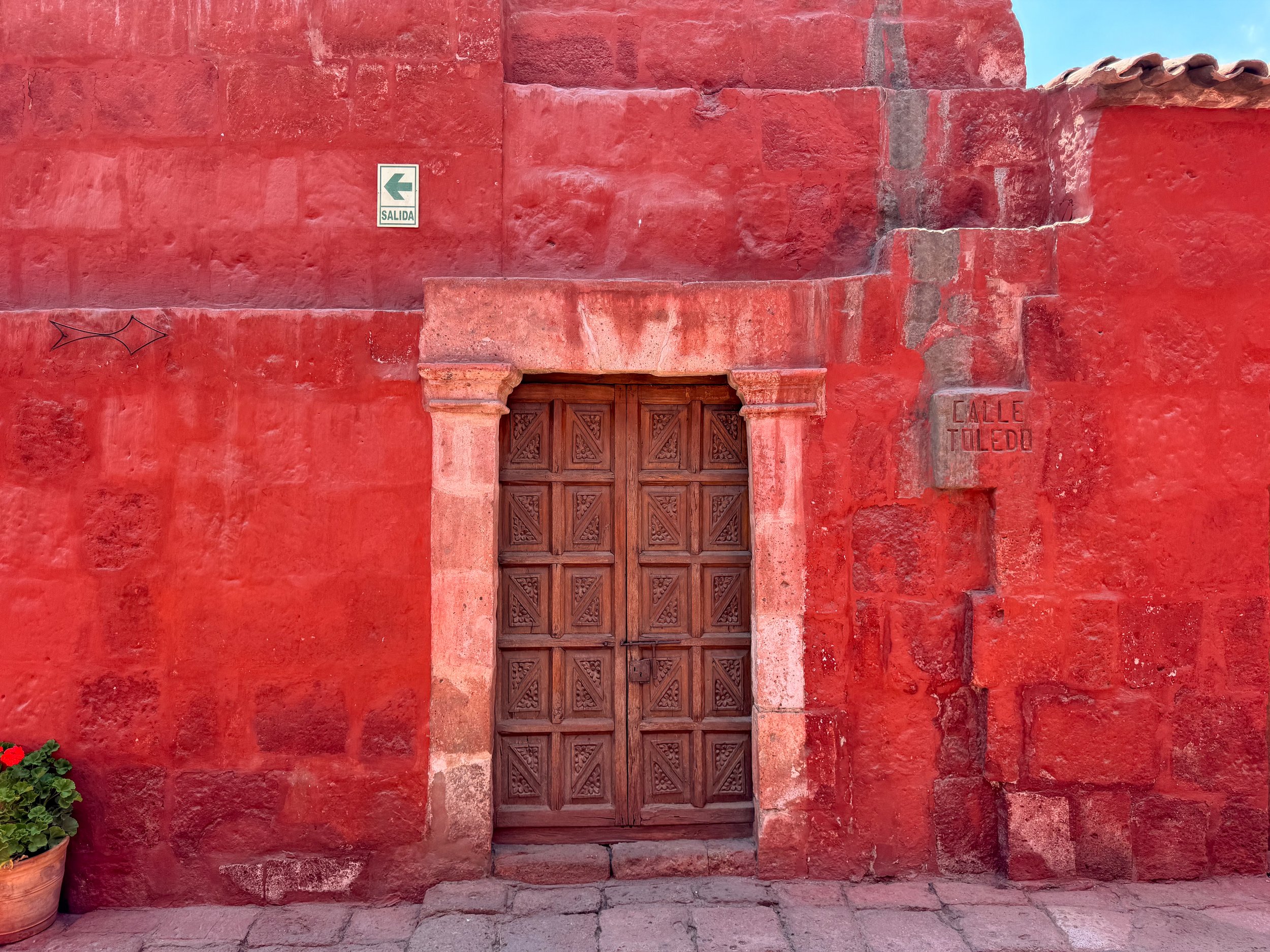
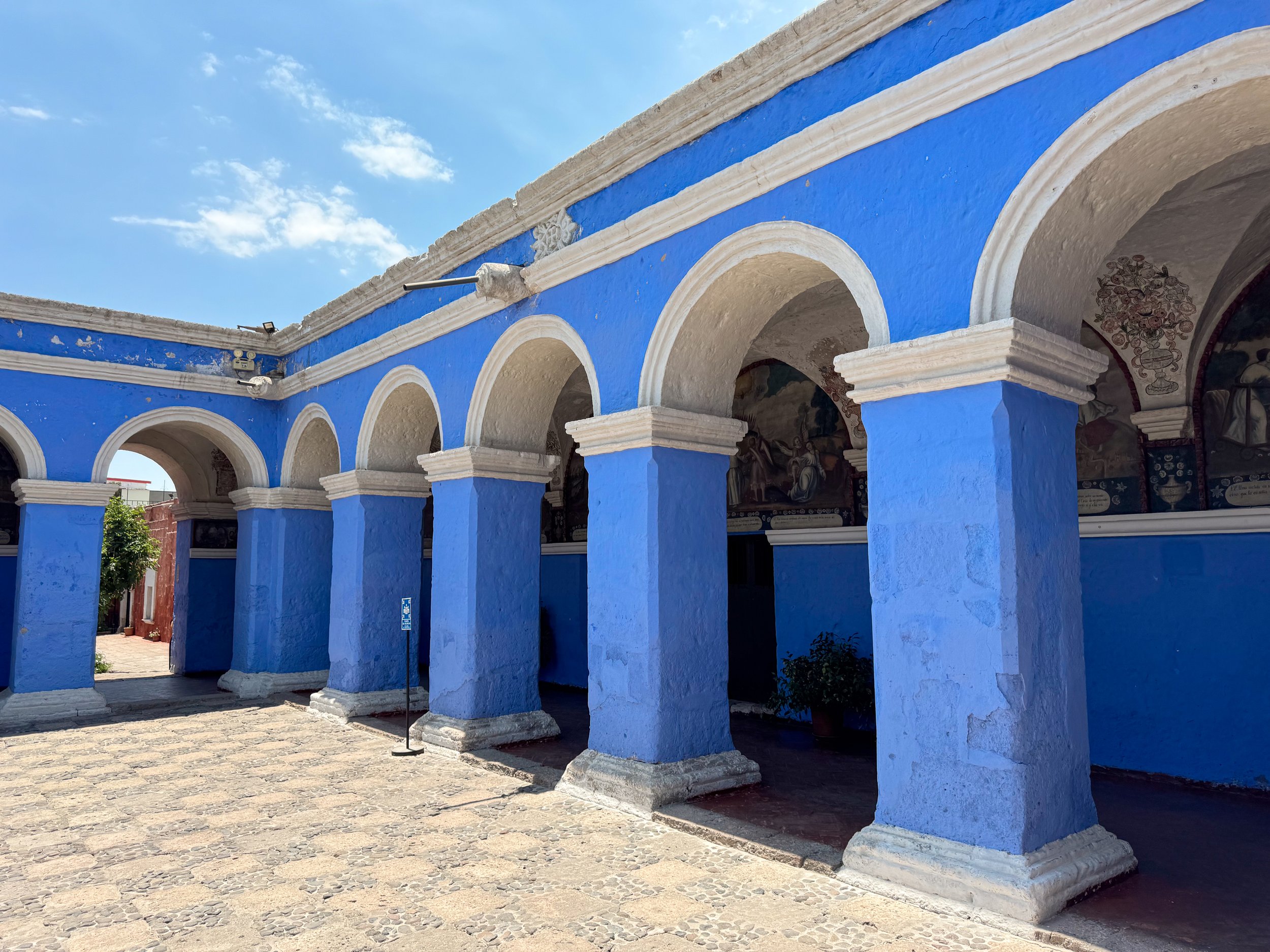
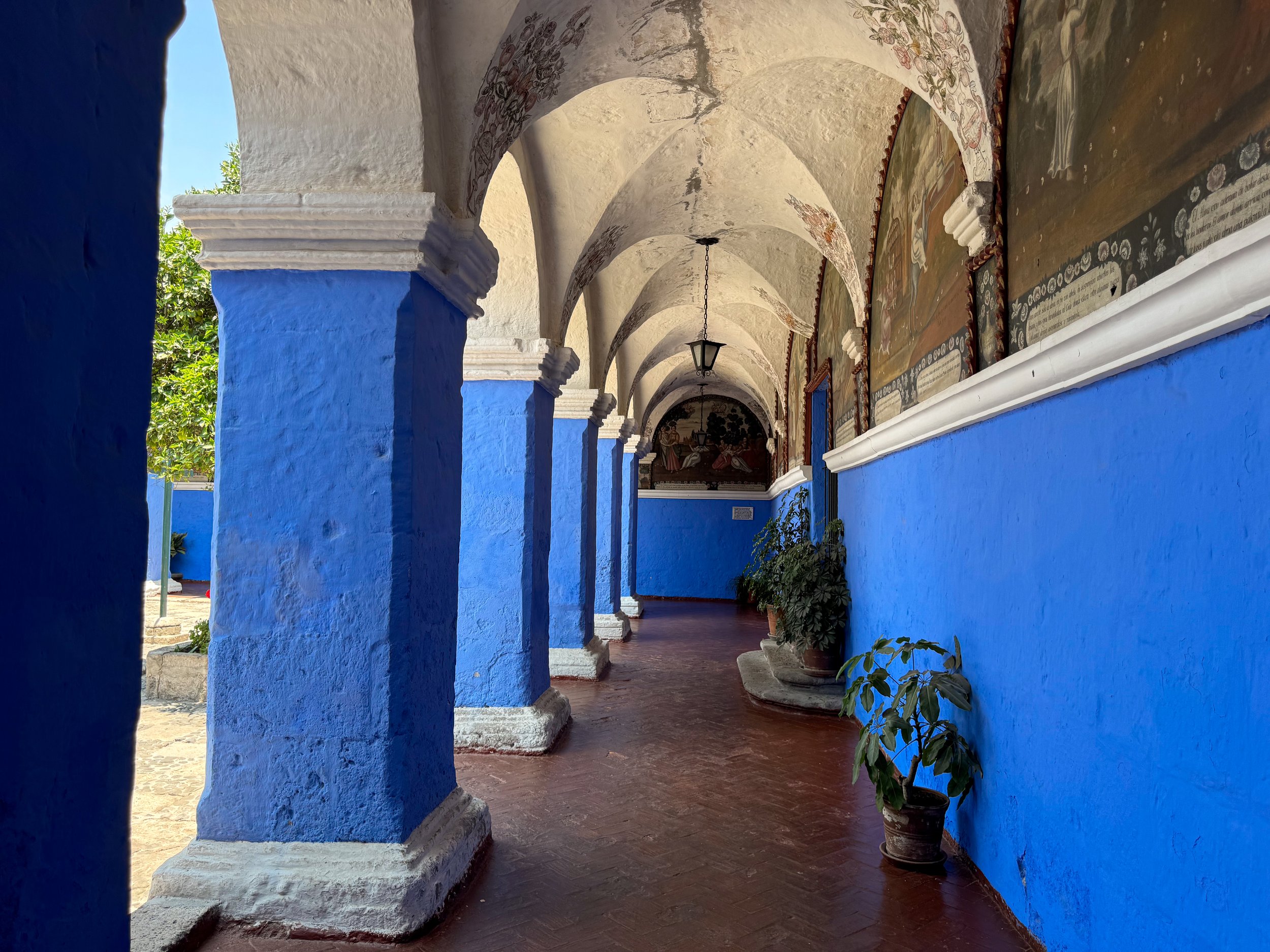
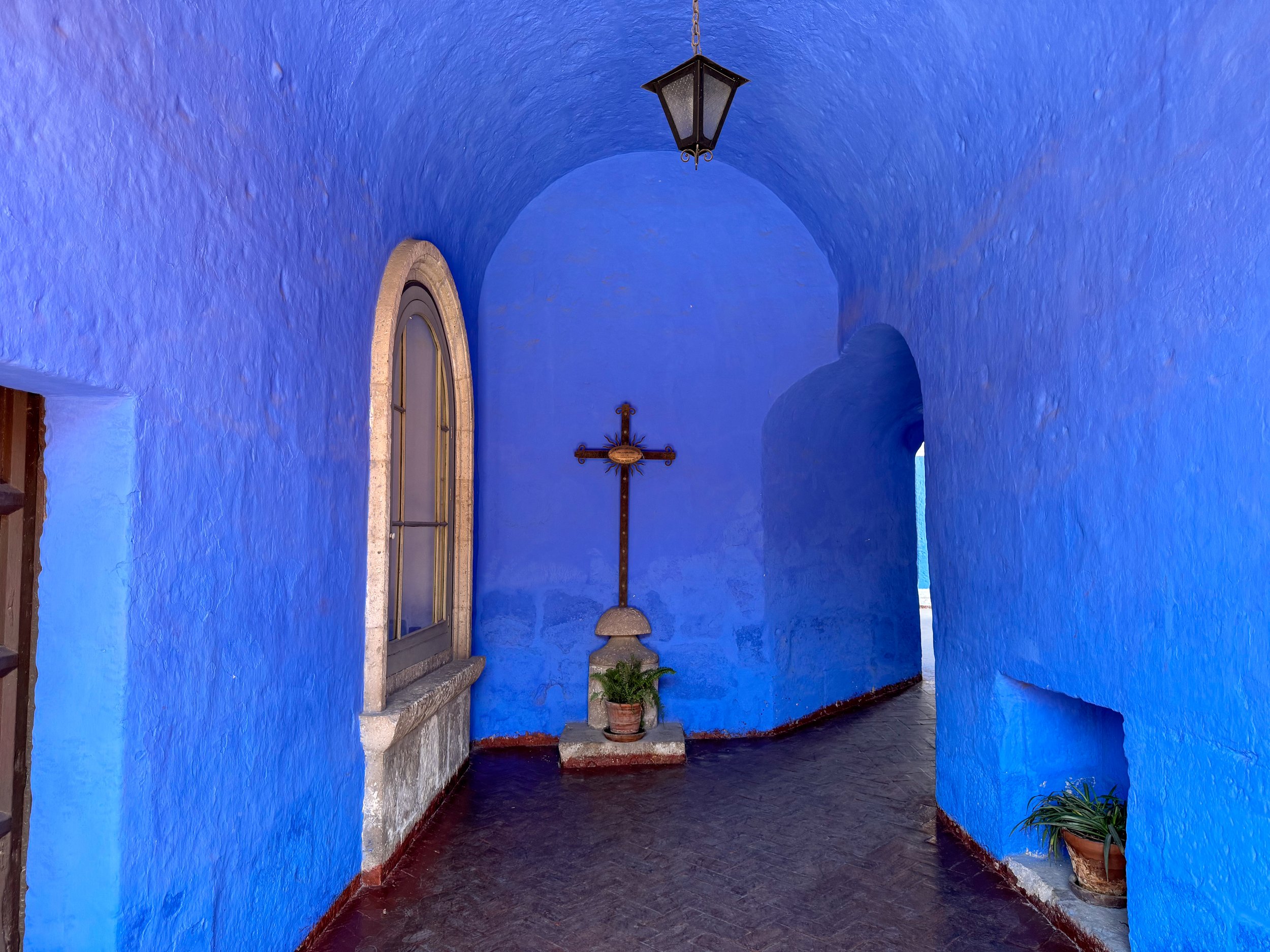
Santa Catalina Monastery. This large colonial monastery is a city within in a city surrounded by a stone wall. It’s defined by its maze of narrow cobblestone streets with their own names and vibrantly painted red walls. Branching off of the streets are individual homes for the nuns, blue painted cloisters, chapels with religious artwork and lush courtyards including one where we stopped for an afternoon wine.
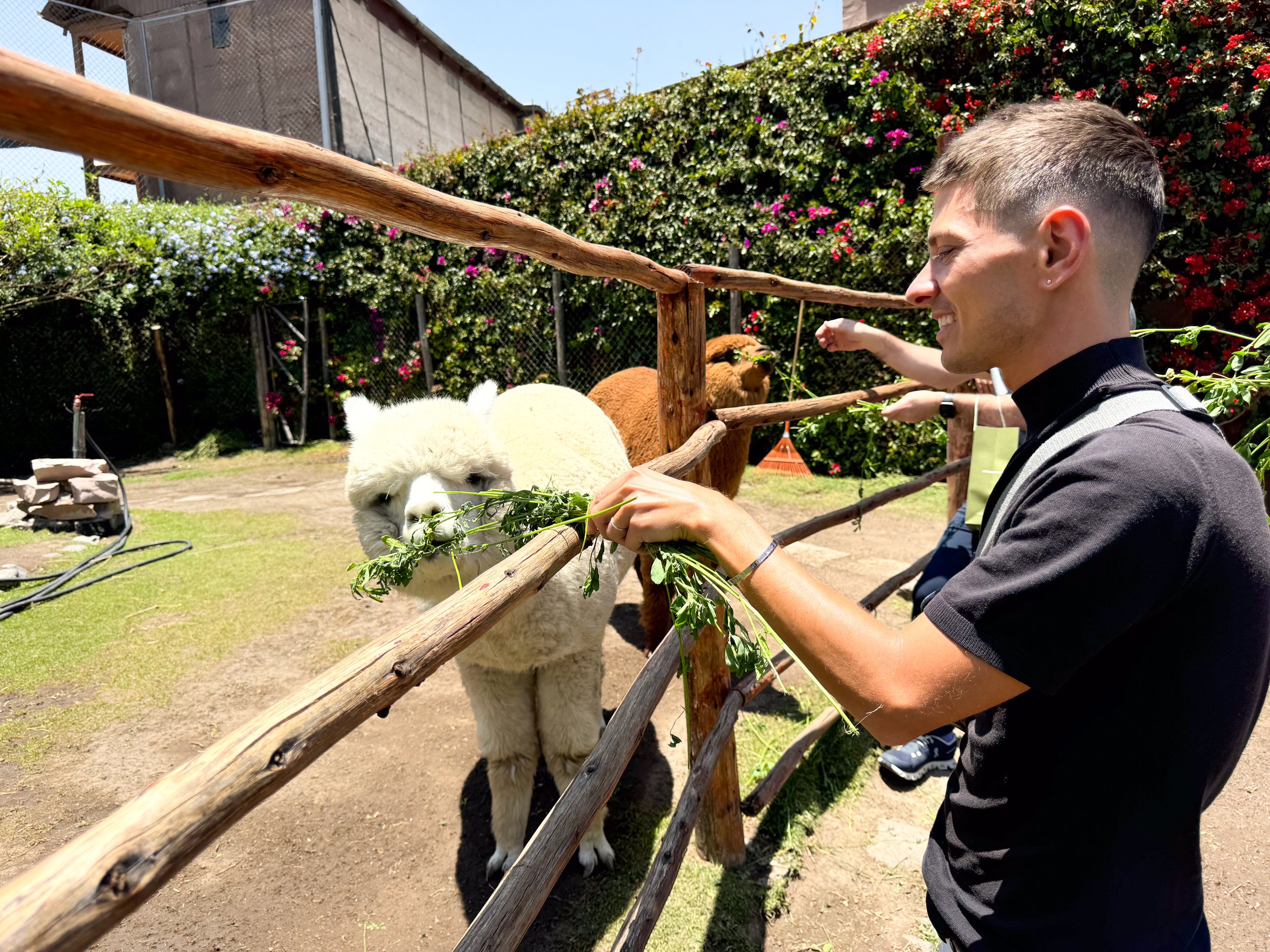
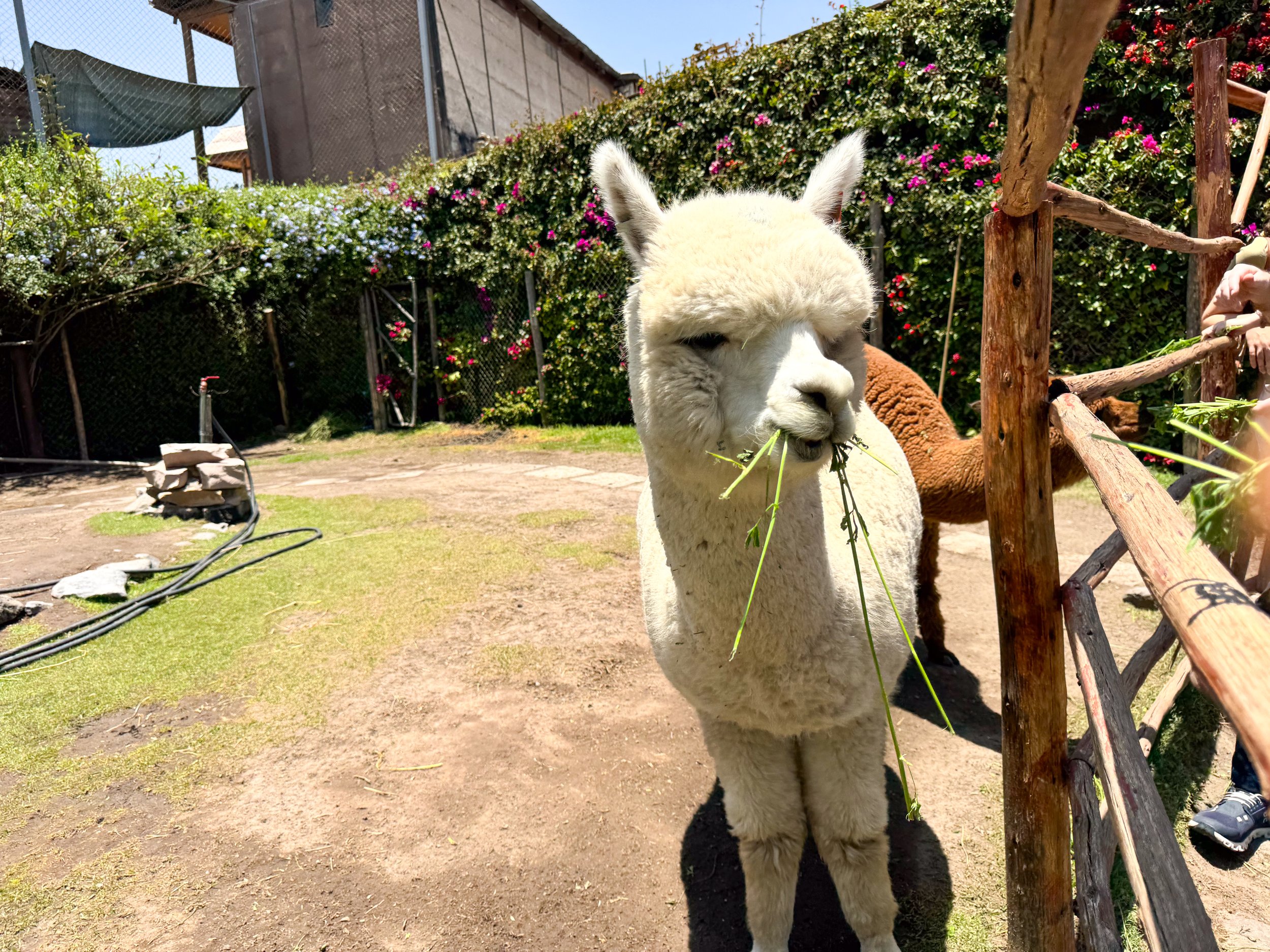
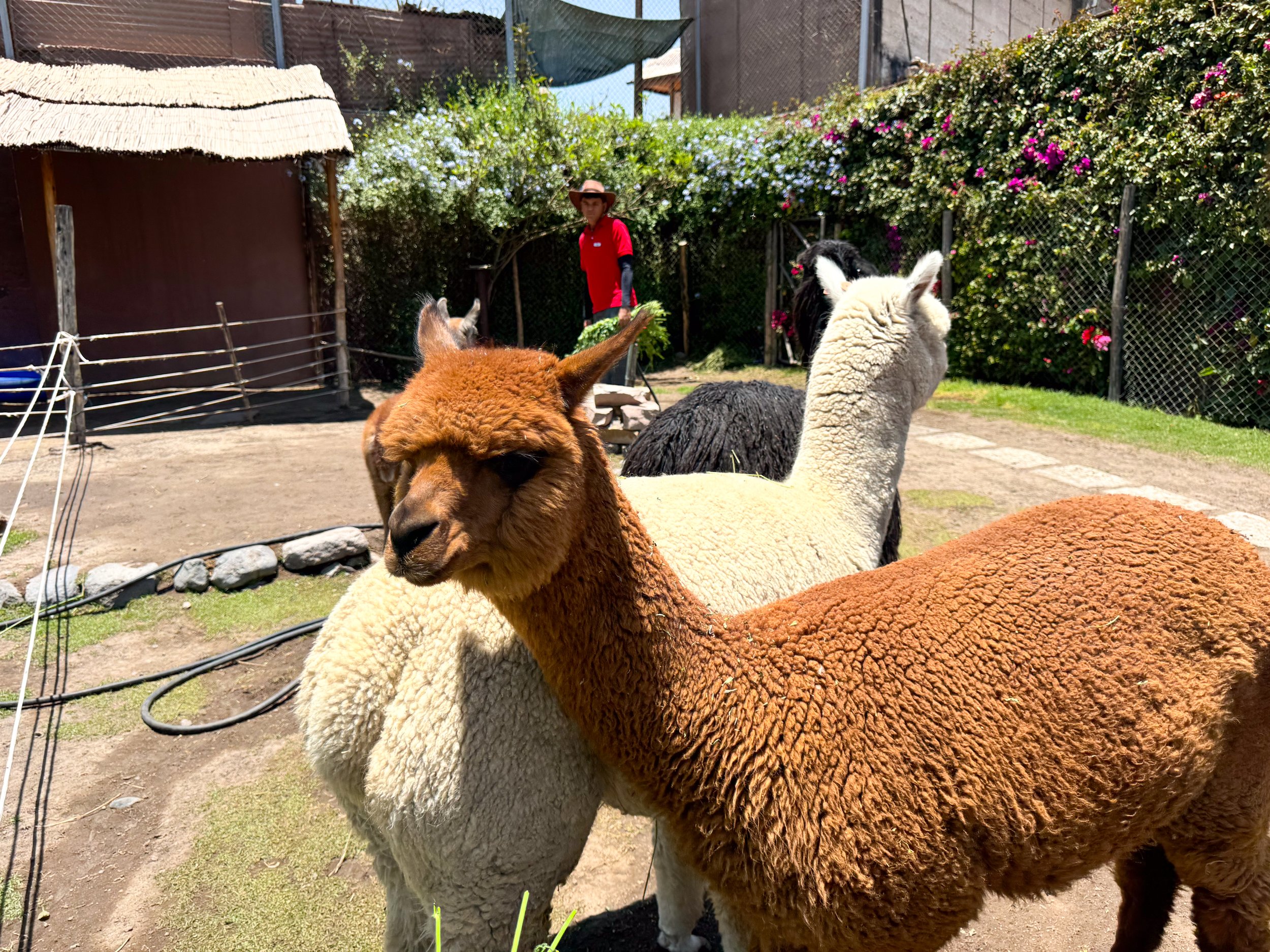
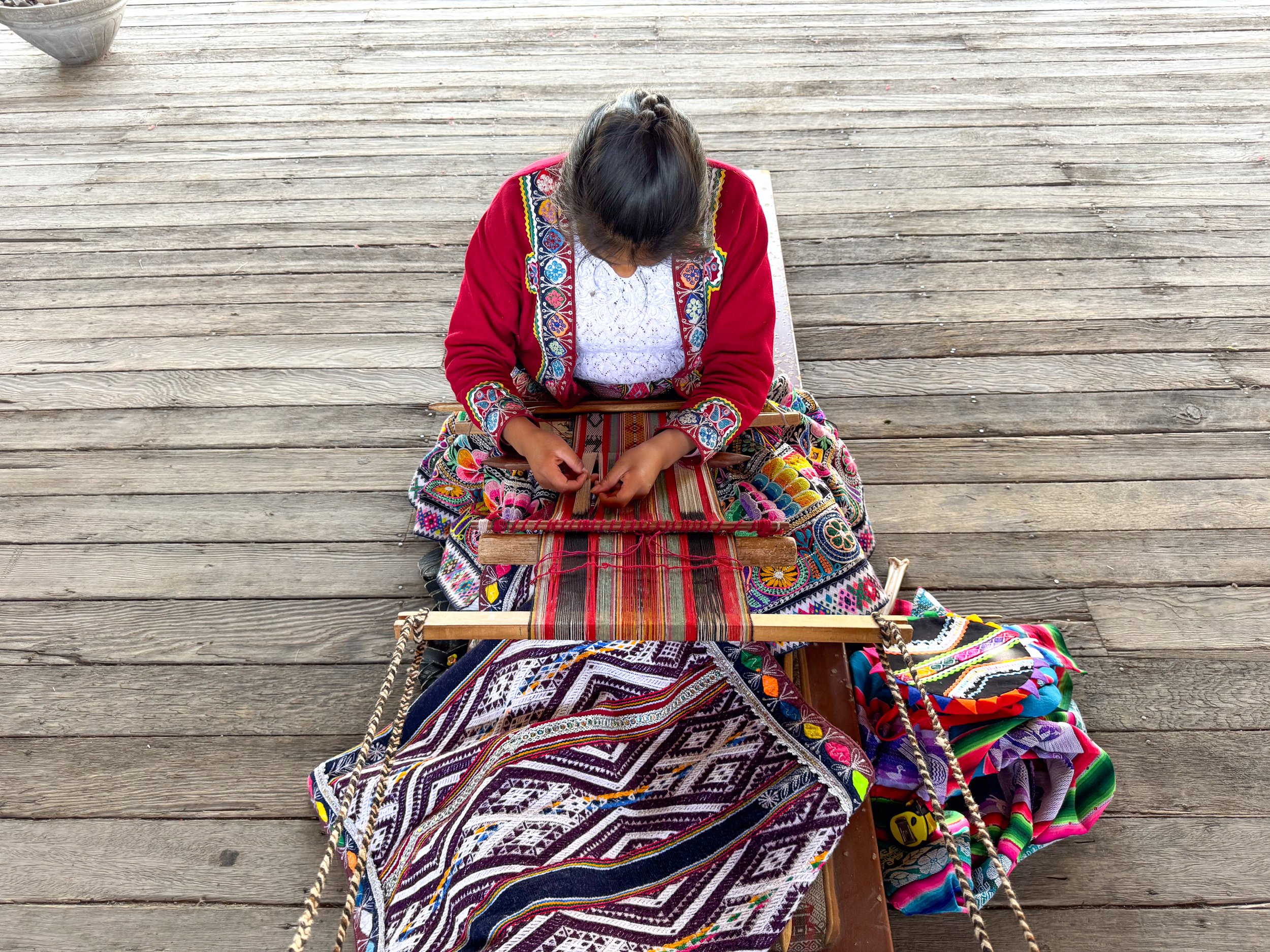

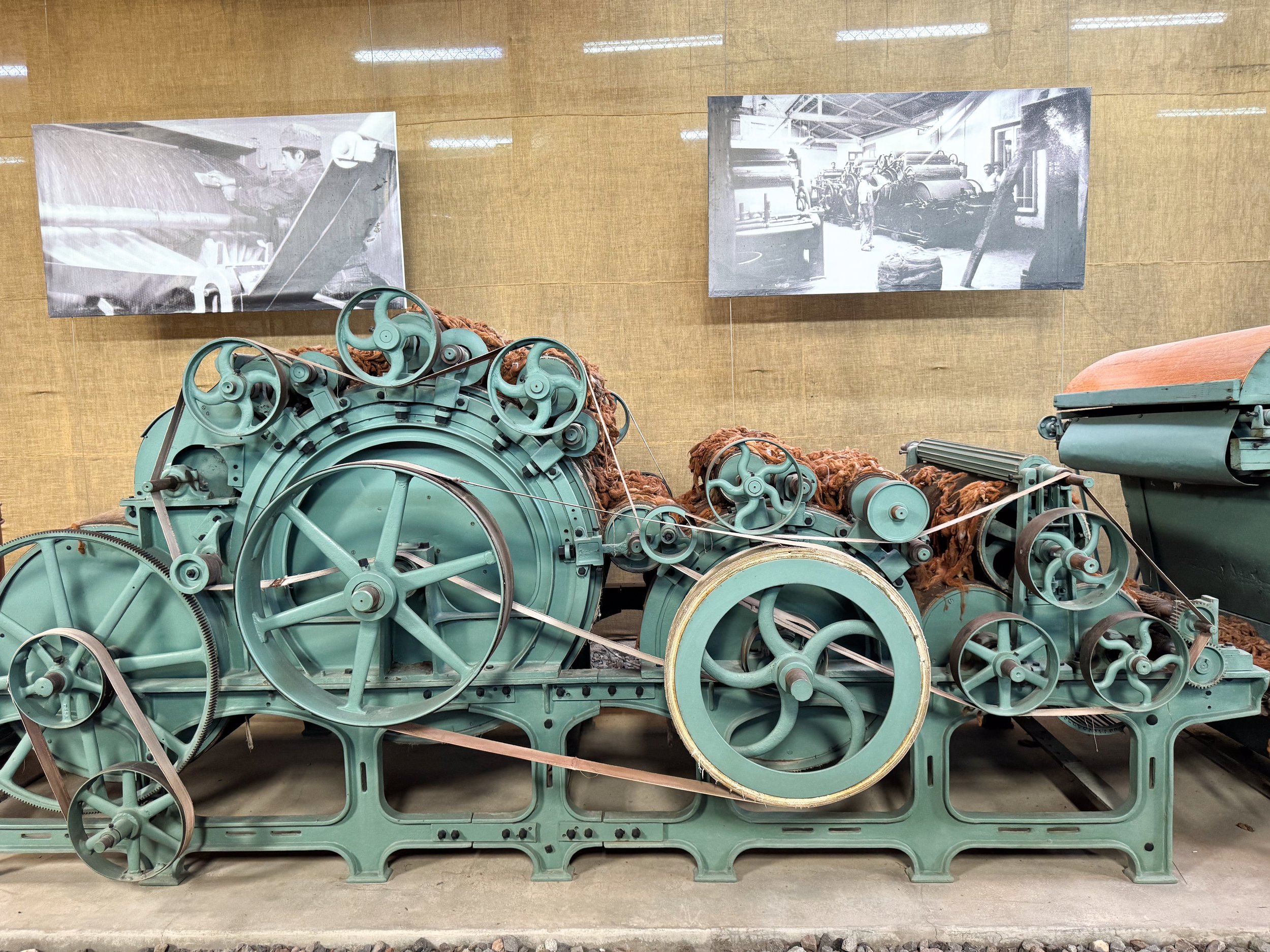
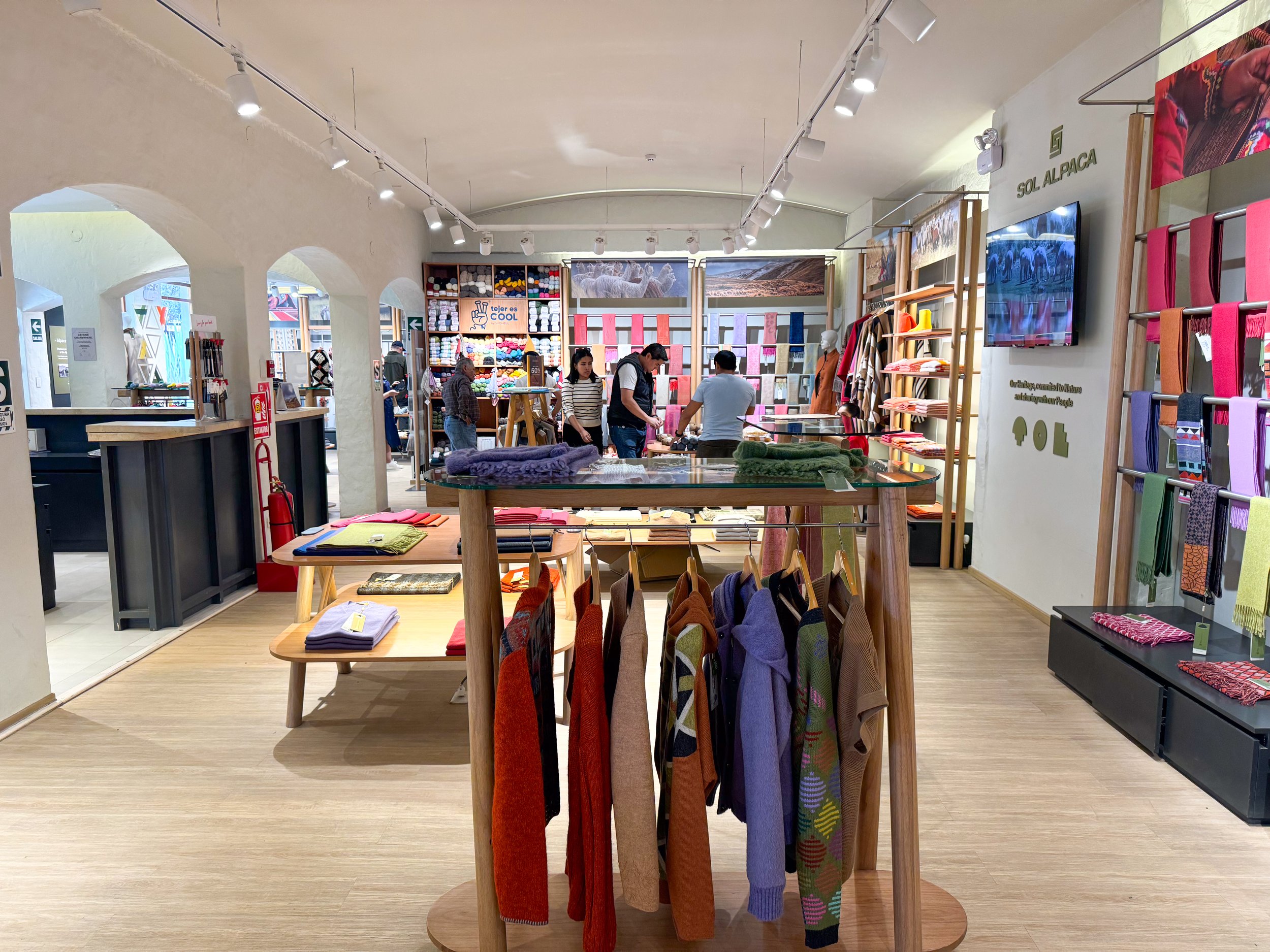
Museums
Mundo Alpaca. A free museum dedicated to llamas, alpacas and vicuñas, the cultural and historic importance of their wool, the artistry used in transforming it into vibrant textiles. We came here to see and feed the animals, watch a woman hand sorting the wool fibers, observe indigenous women hand weaving beautiful blankets using indigenous methods.
MUCEN Arequipa. A small museum in a historic building with a collection of Peruvian pottery organized by period of time, civilization and geographic regions across the country. Separate galleries display Arequipa style religious artwork and early forms of Peruvian currency. The museum is free to enter.
Where to Shop
Arequipa is a hub for Peruvian alpaca and vicuñas textiles, clothing and accessories including ponchos, sweaters, hats, gloves, blankets and yarn. We shopped at high end clothing stores, artisan markets and souvenir style shops. The higher end shops offered seasonal discounts ranging from 10-40% off while prices were negotiable at the artisan markets, souvenir style shops.
Sol Alpaca. A higher end shop with finer grades of alpaca and vicuñas wool clothing and accessories made with modern designs and patterns. We bought a poncho and hat.
Carasco Company. A historic hat maker that sells traditional Peruvian style hats made from alpaca fibers. I bought a blue wool hat with a yellow band.
Qori Kancha. A shop that sells lesser grade alpaca wool clothing and accessories made with traditional designs and patterns. I bought a blue and red traditional style poncho with a geometric pattern from here.
Festival Artesanal Productores Arequipenos. A popup market near the Plaza de Armas with tents of local artisans knitting and selling alpaca fiber clothing and accessories. I bought a sweater with the design of a vicuña embroidered on it.
Fundo El Fierro Arequipa. An artisan craft market in the alley way, plaza and market surrounding the Plaza de San Francisco. Come here for all manner of alpaca products, handmade items, gifts and souvenirs.
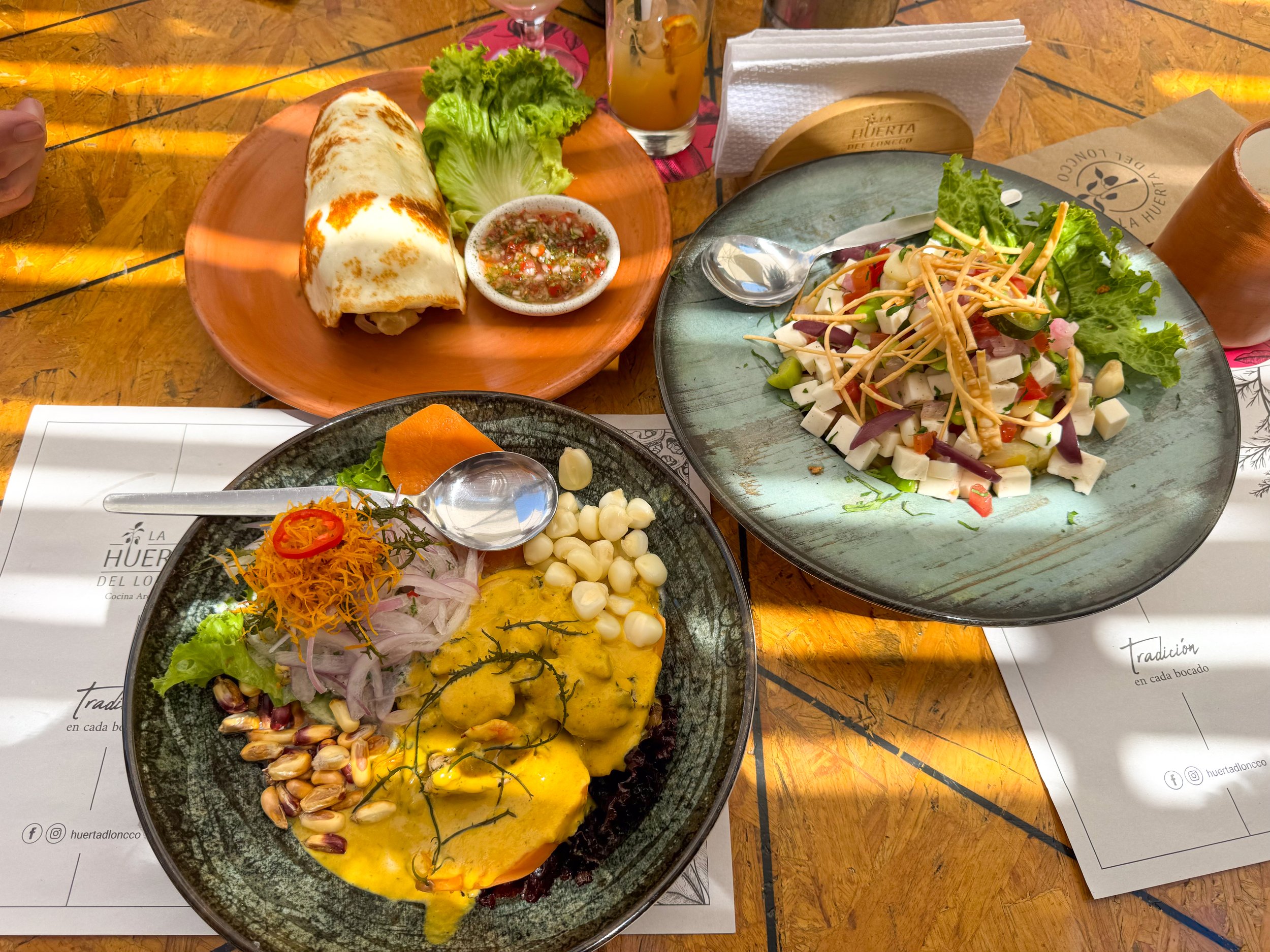
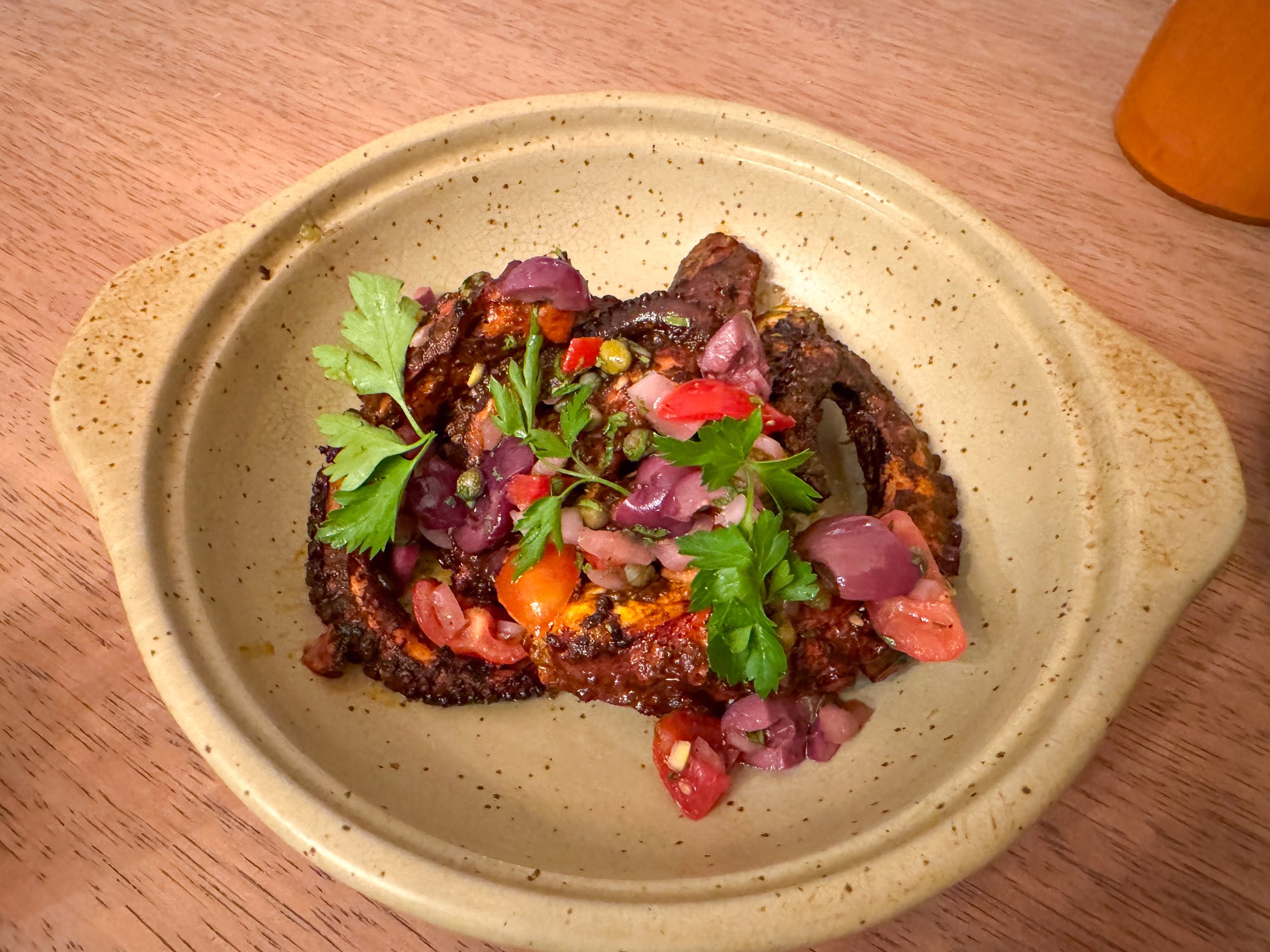
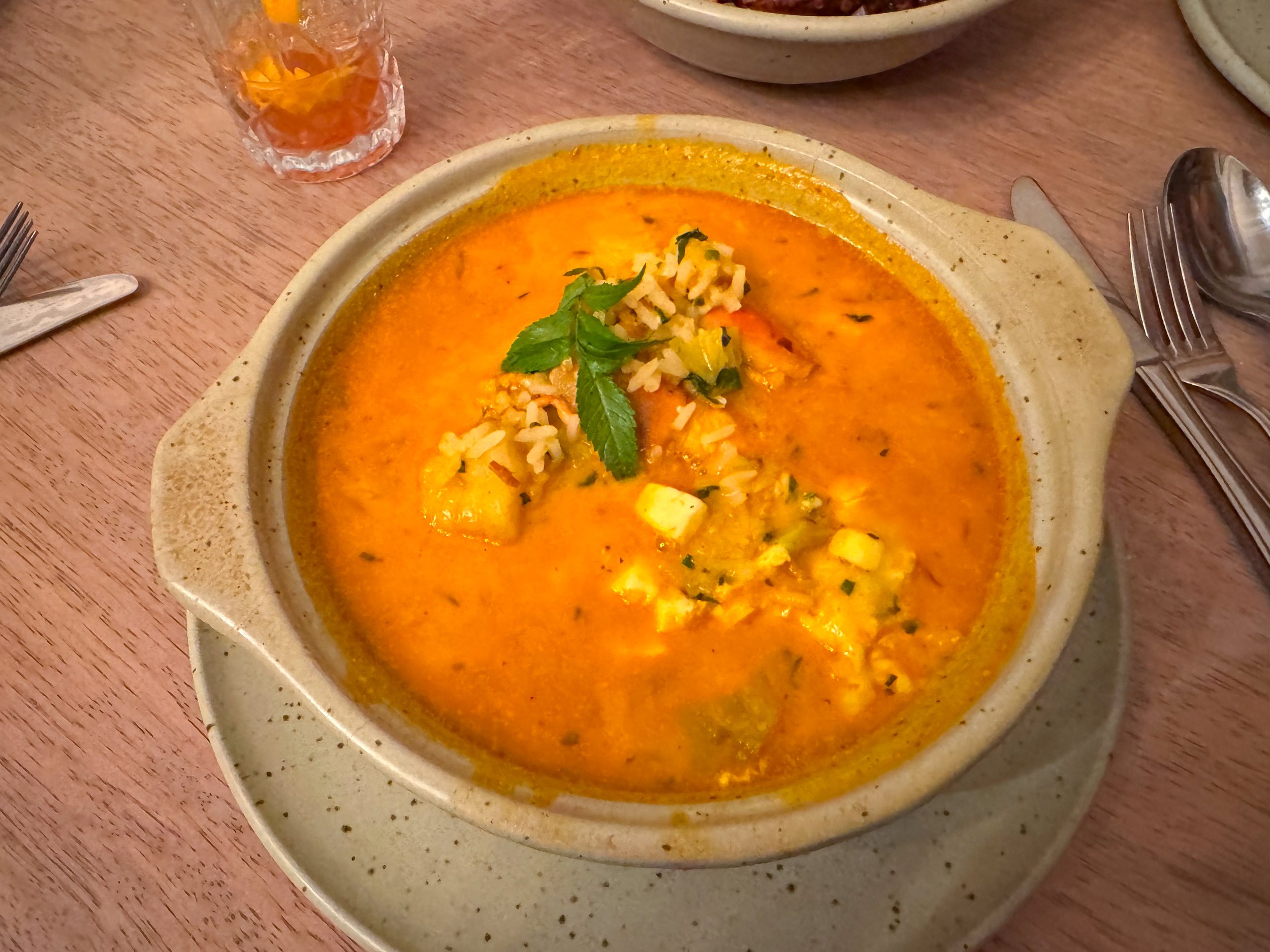
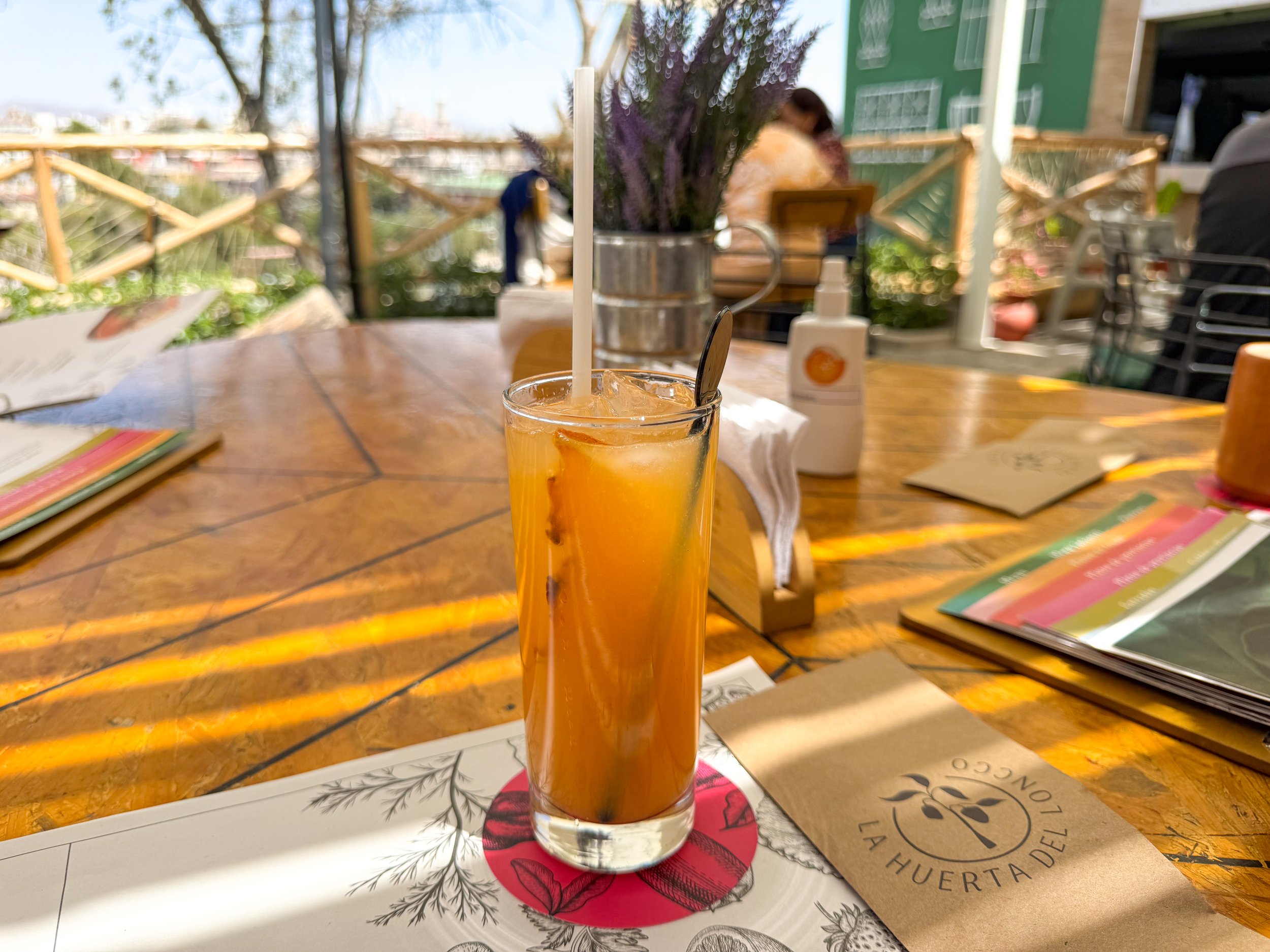
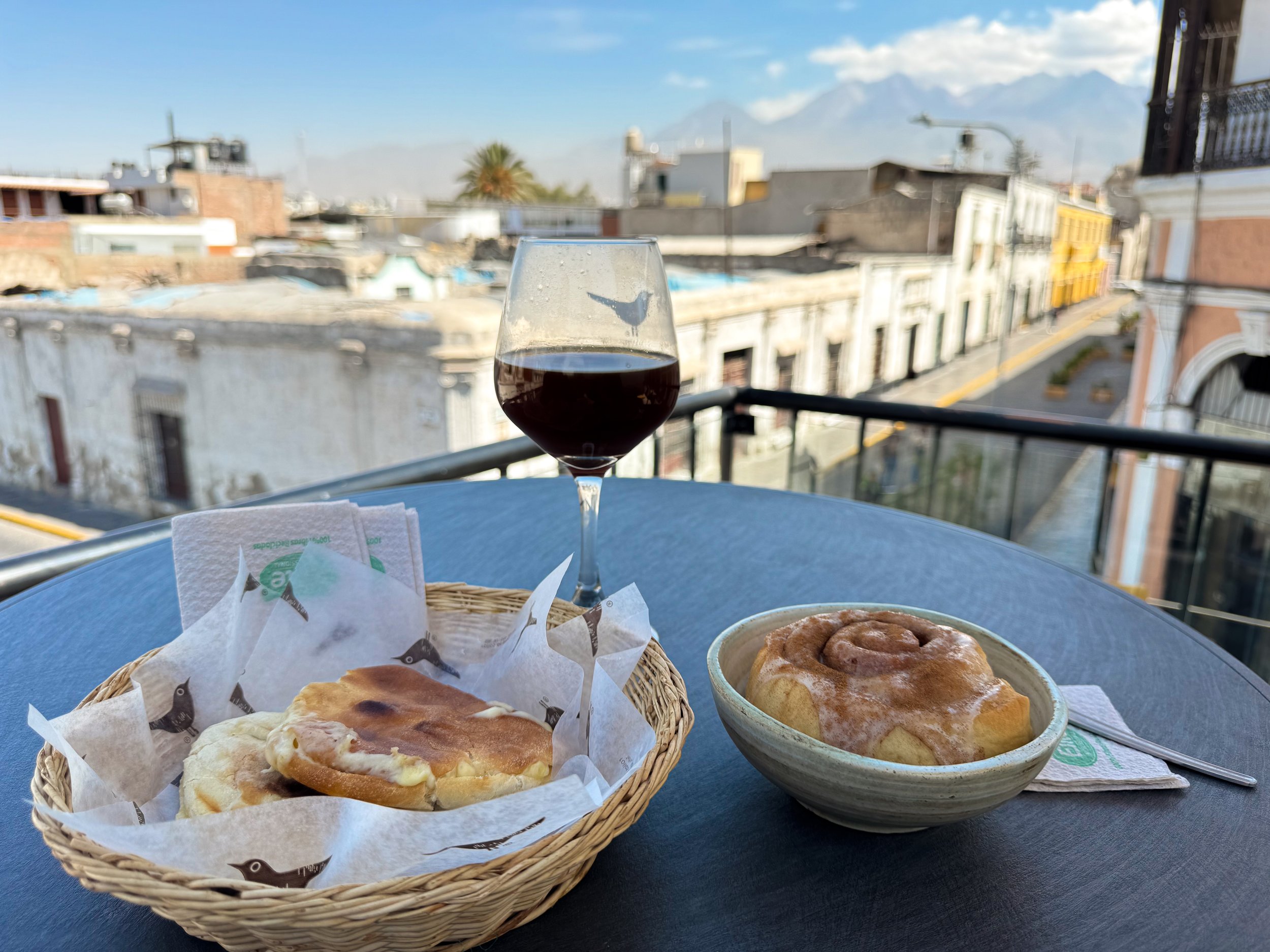
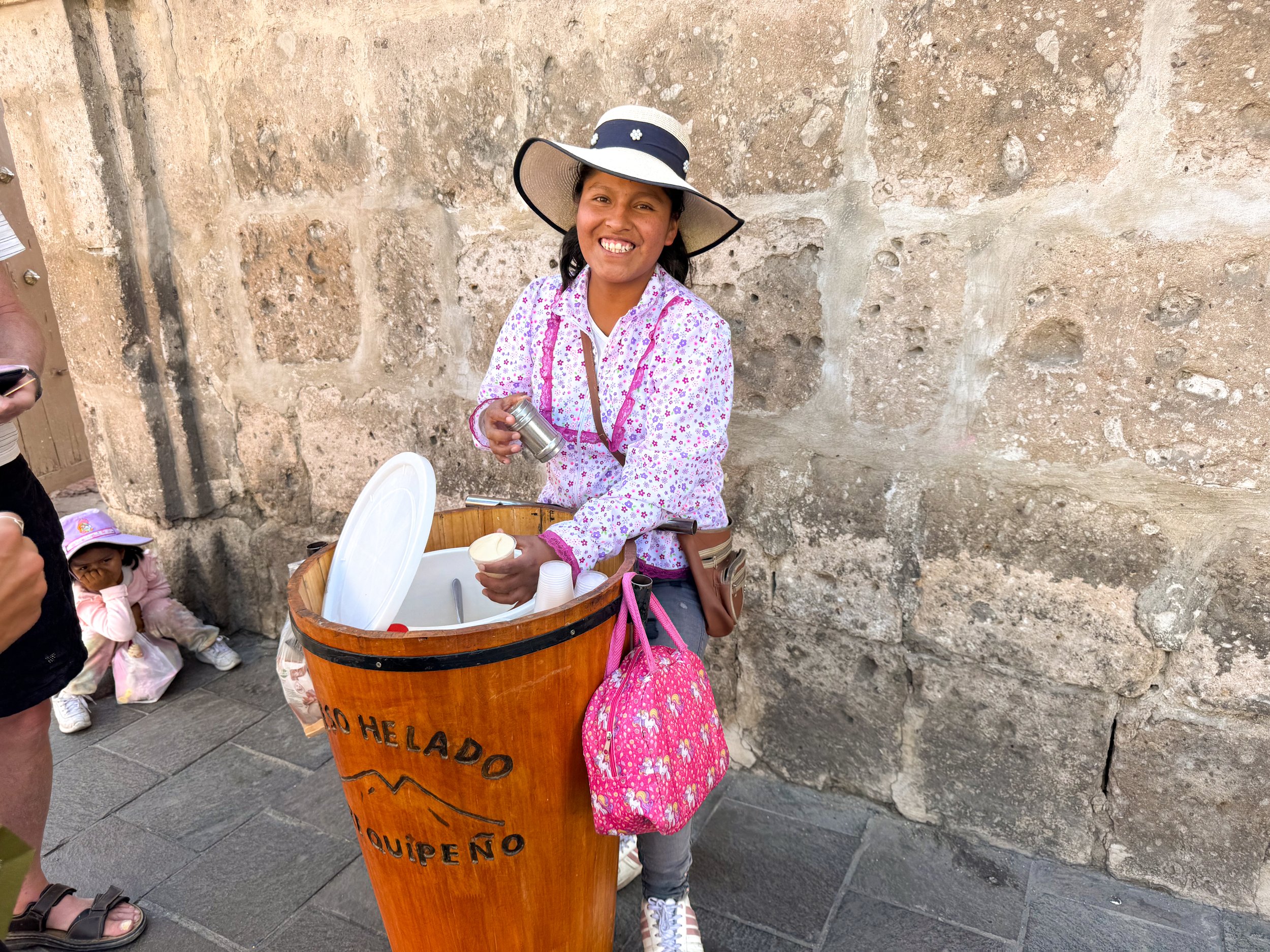
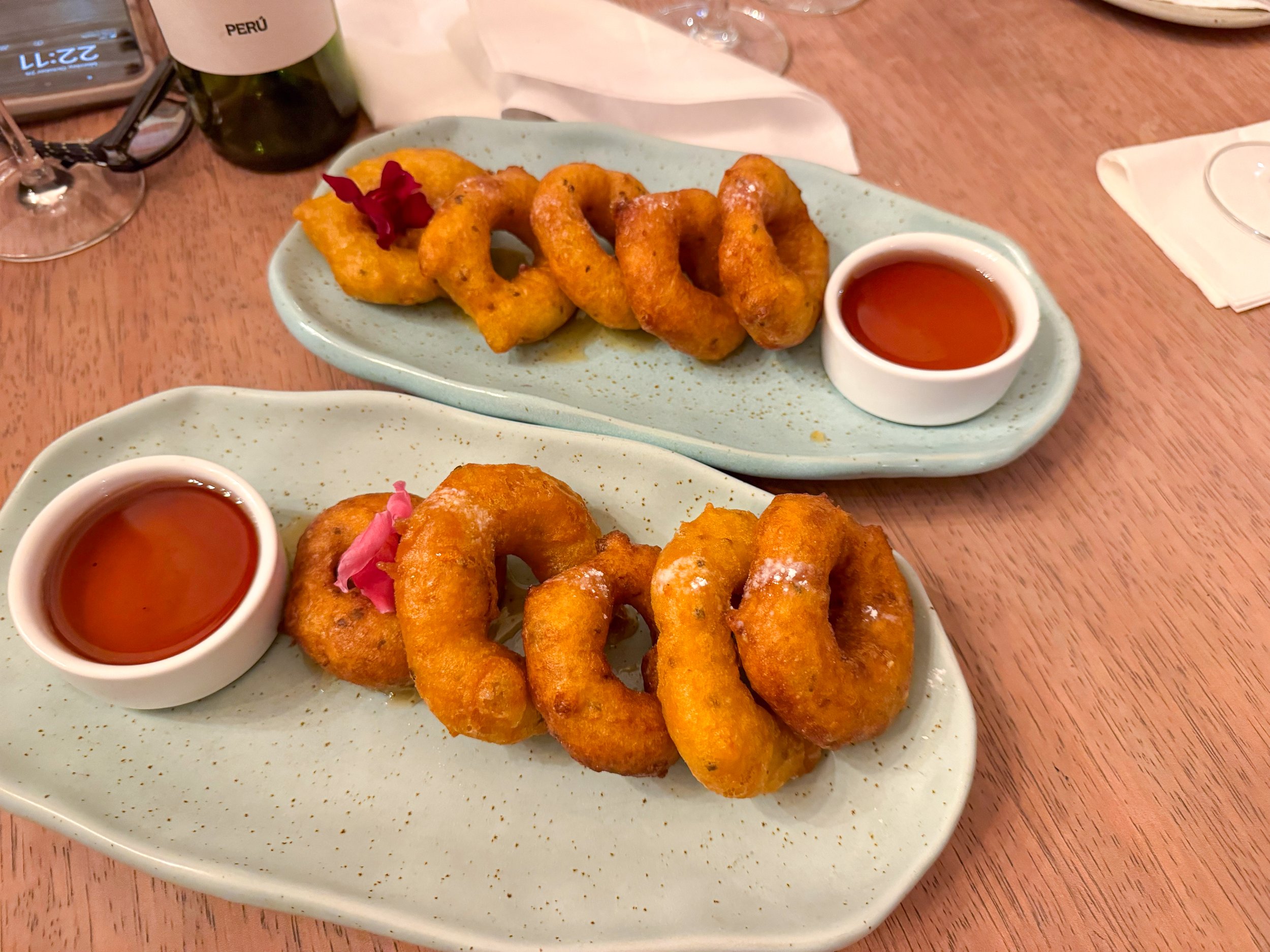
Arequipa Cuisine
Arequipa is recognized as a gastronomic hub for its cuisine and cultural significance in Peru. While here, we shopped and ate at the local market, dined at picantereas, tasted the street food and enjoyed rooftop cafes and bars.
Picantereas. A type of restaurant local to Arequipa known for spicy food.
Chupe de Camarones. A shrimp stew with potatoes and rice cooked in a spicy and creamy broth. It’s a popular dish local to Arequipa and sold at picantereas across the city.
Tantawawa. A Peruvian bread made specifically for Dia de los Muertos. It’s a spiced brioche style loaf commonly braided into the shape of a swaddled infant, llama or basket decorated in sesame seeds and colorful sprinkles.
Queso Helado. An ice-cream made from local cheese. It’s commonly sold by the cup on the street.
Choclo con Queso. Boiled Peruvian corn wrapped in a grilled piece of Peruvian cheese.
Alpaca & Guinea Pig. We don’t eat meat however we saw both animal on the menu in restaurants across the city. Alpaca can be served as a steak while guinea pigs are often served whole.
Picarones. A fried potato based donut served with honey.
Ocopa Sauce. A yellow creamy sauce made from peppers, cilantro and cheese. It’s often used to cover potato and meat dishes.
Chicha. A fermented drink made from purple corn. It was popular during the Incan times and is still drank today by itself or as an ingredient in cocktails.
Cusquena. One of Peru’s national beers easily identifiable by its bottle cap with Machu Picchu on it and a bottle embossed in Incan stone work. It comes in three varieties, Dorado (Golden), Wheat and Negro (Stout).
Chilcano. A Peruvian cocktail made with Pisco, lime juice and ginger ale. We ordered the traditional version and one with passion fruit multiple times, even making our own using this recipe.
2.5 oz Pisco (plain or with passion fruit)
0.5 oz Fresh lime juice
12 oz Ginger ale
2 dashes Angostura bitters
Stir together with ice
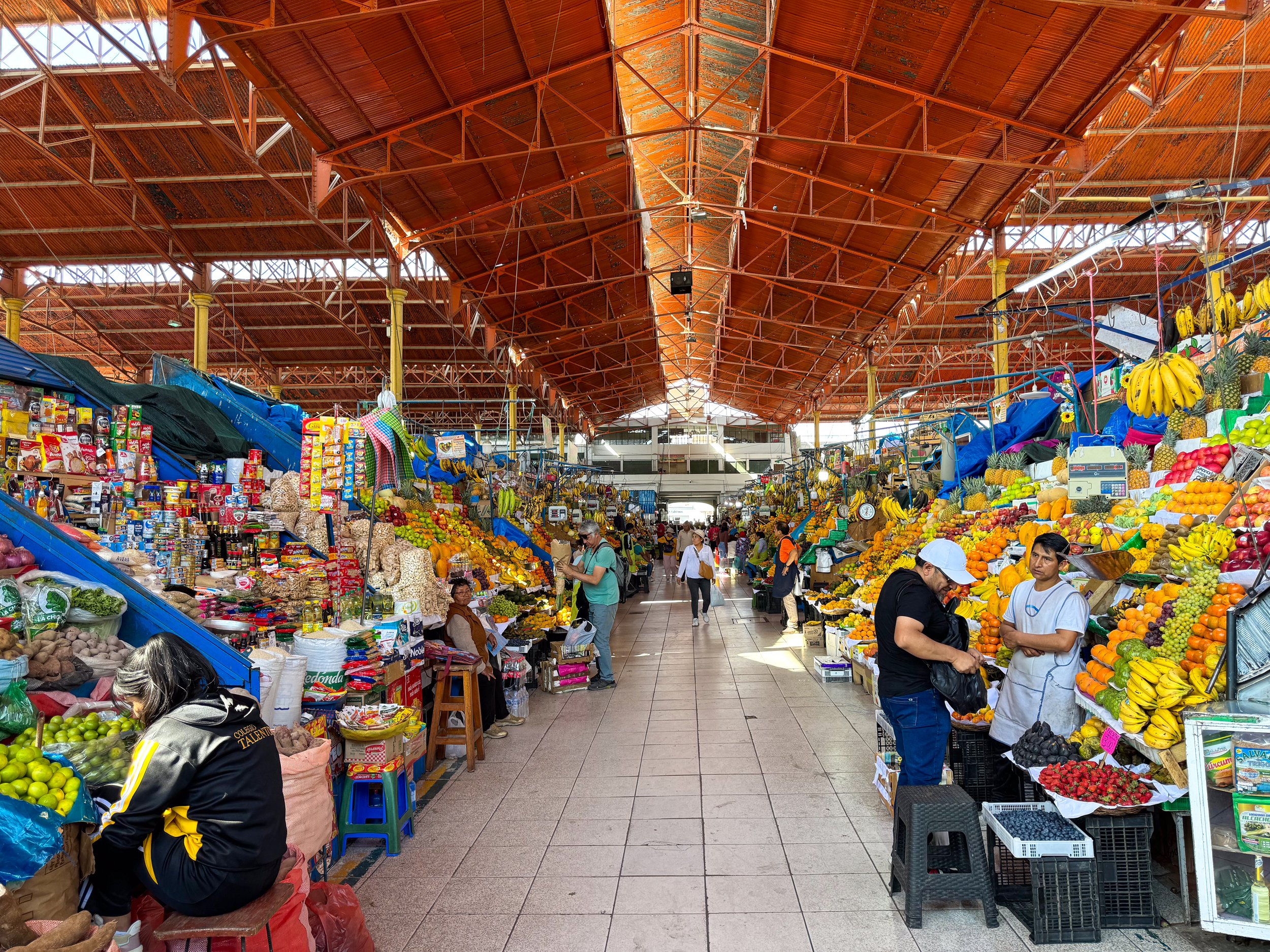
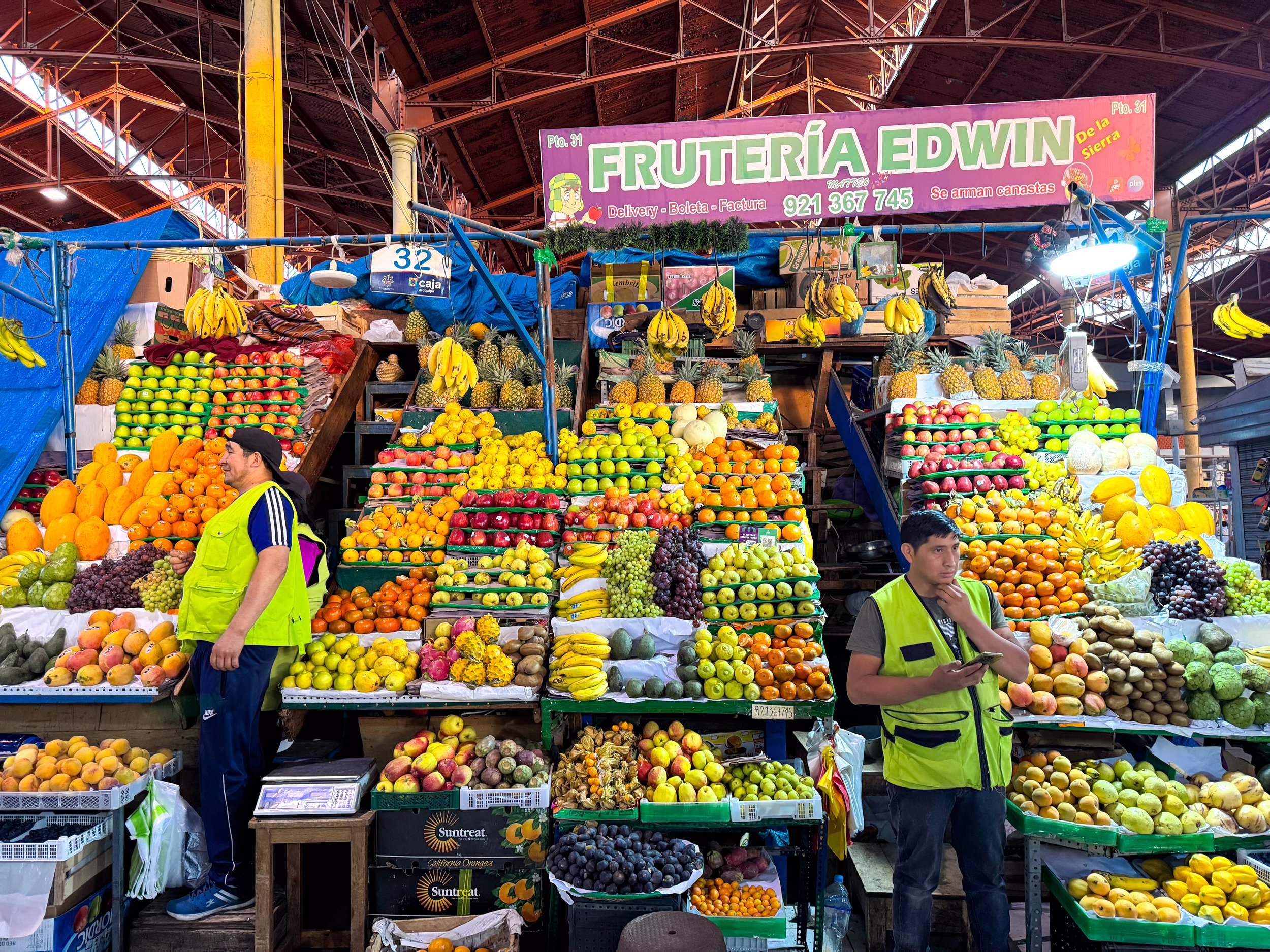
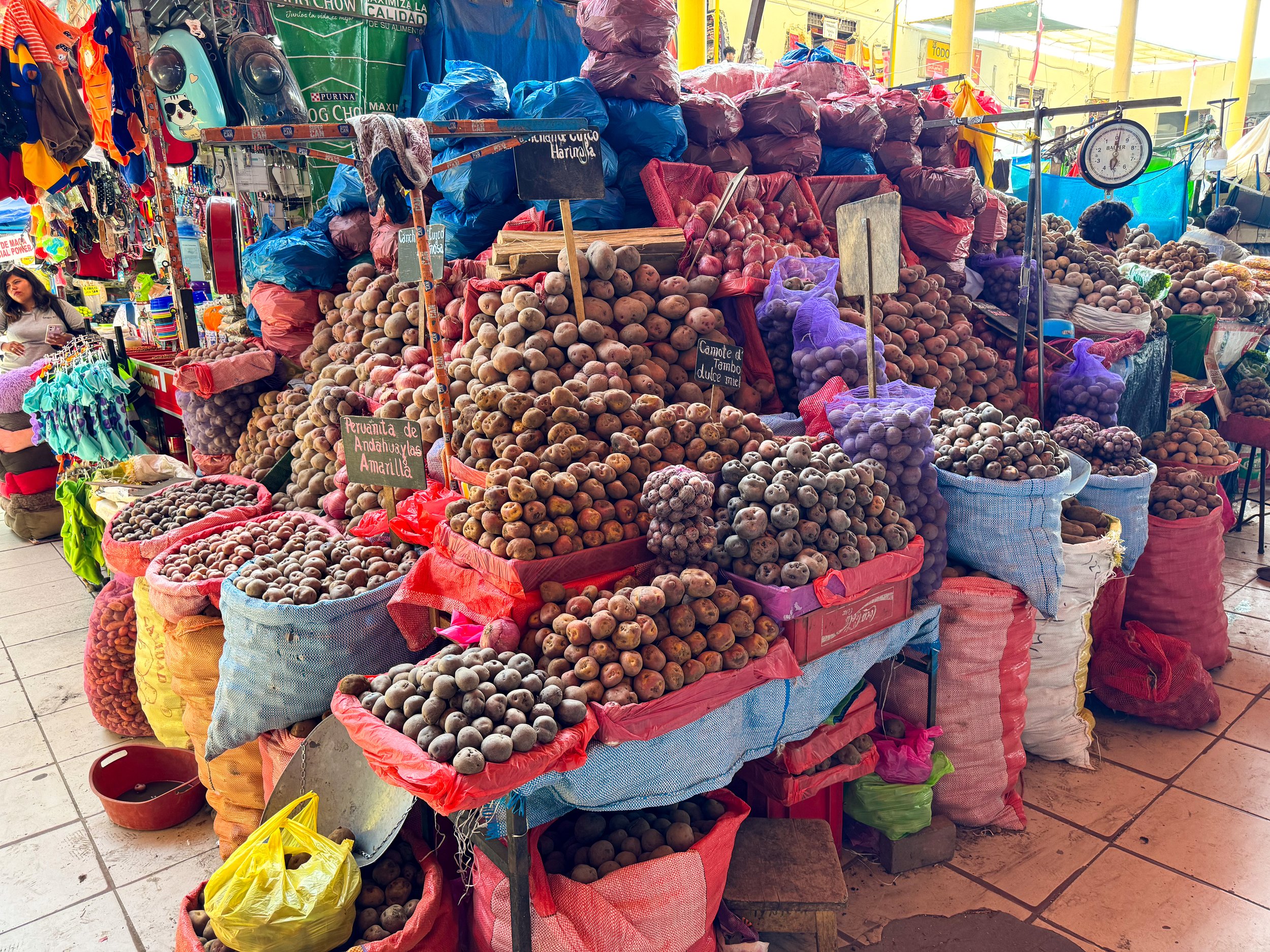
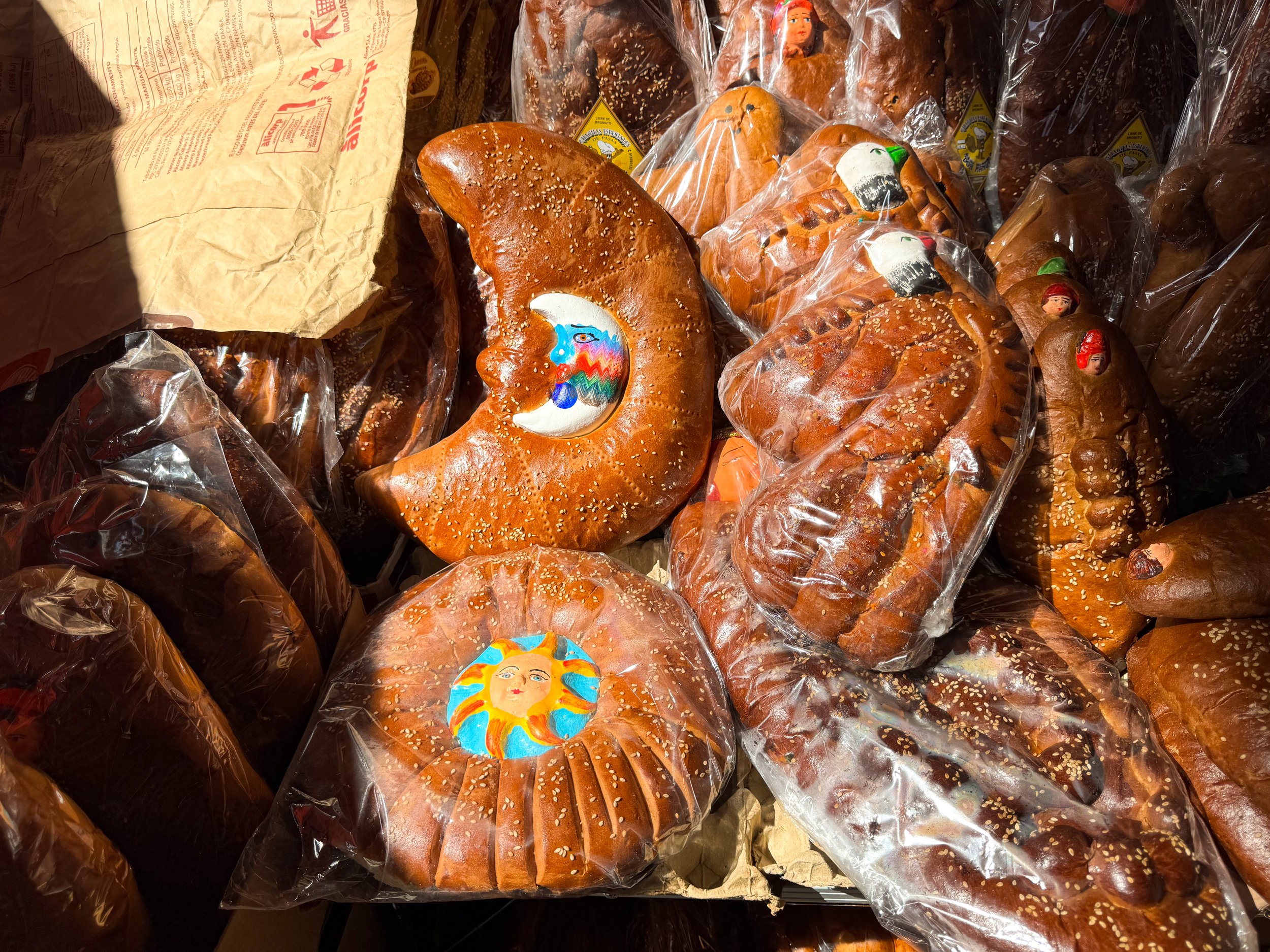
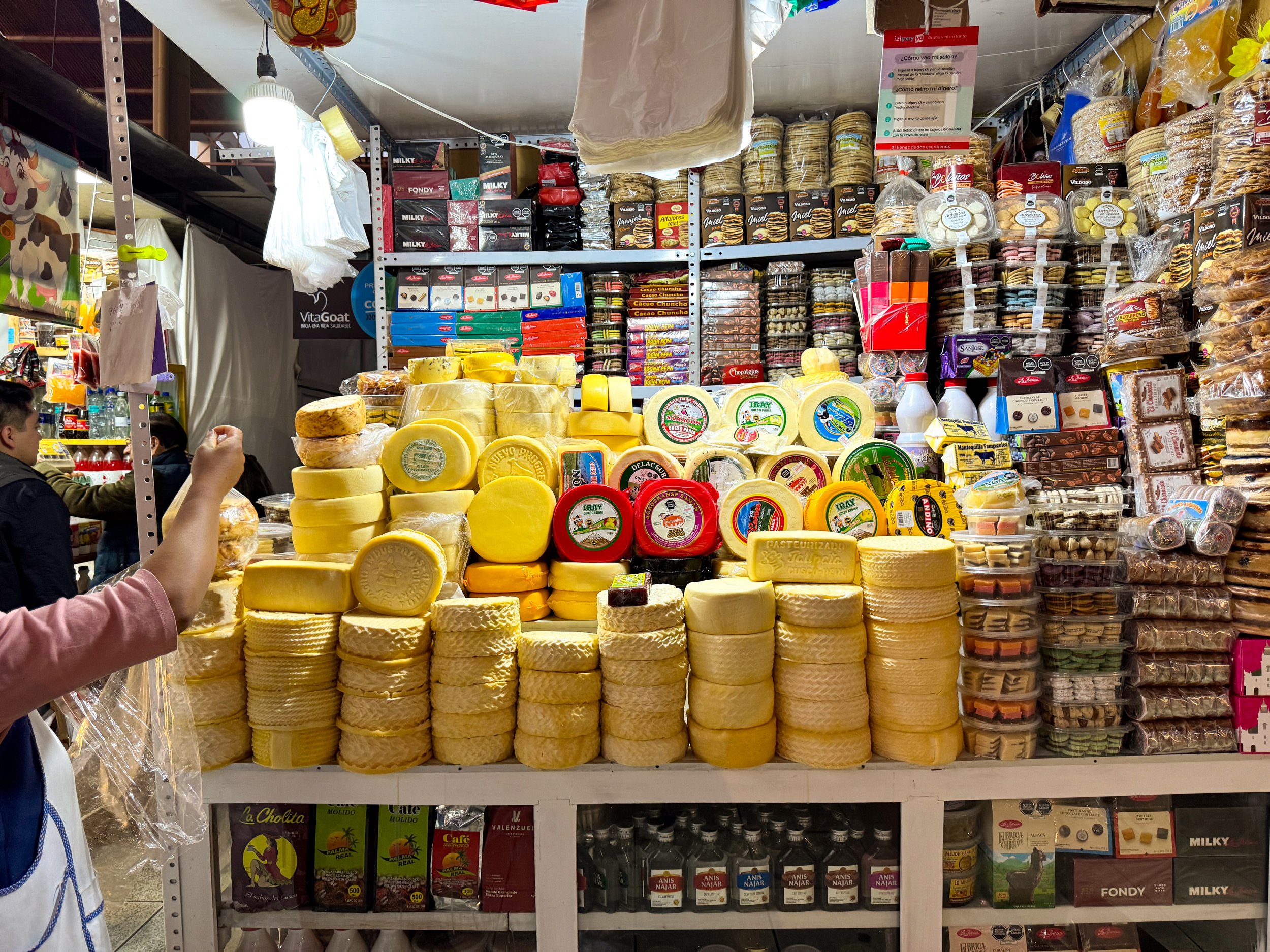
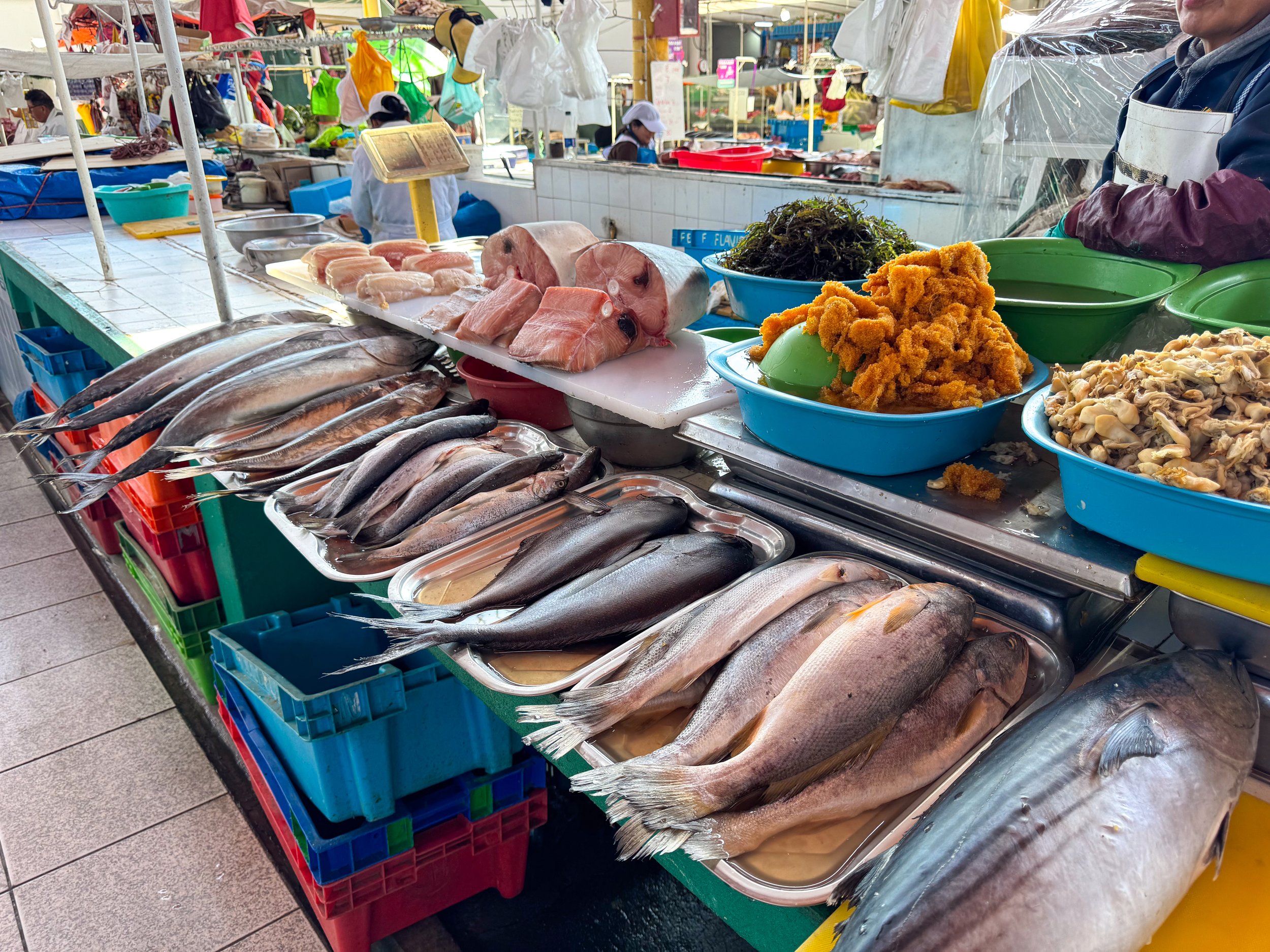
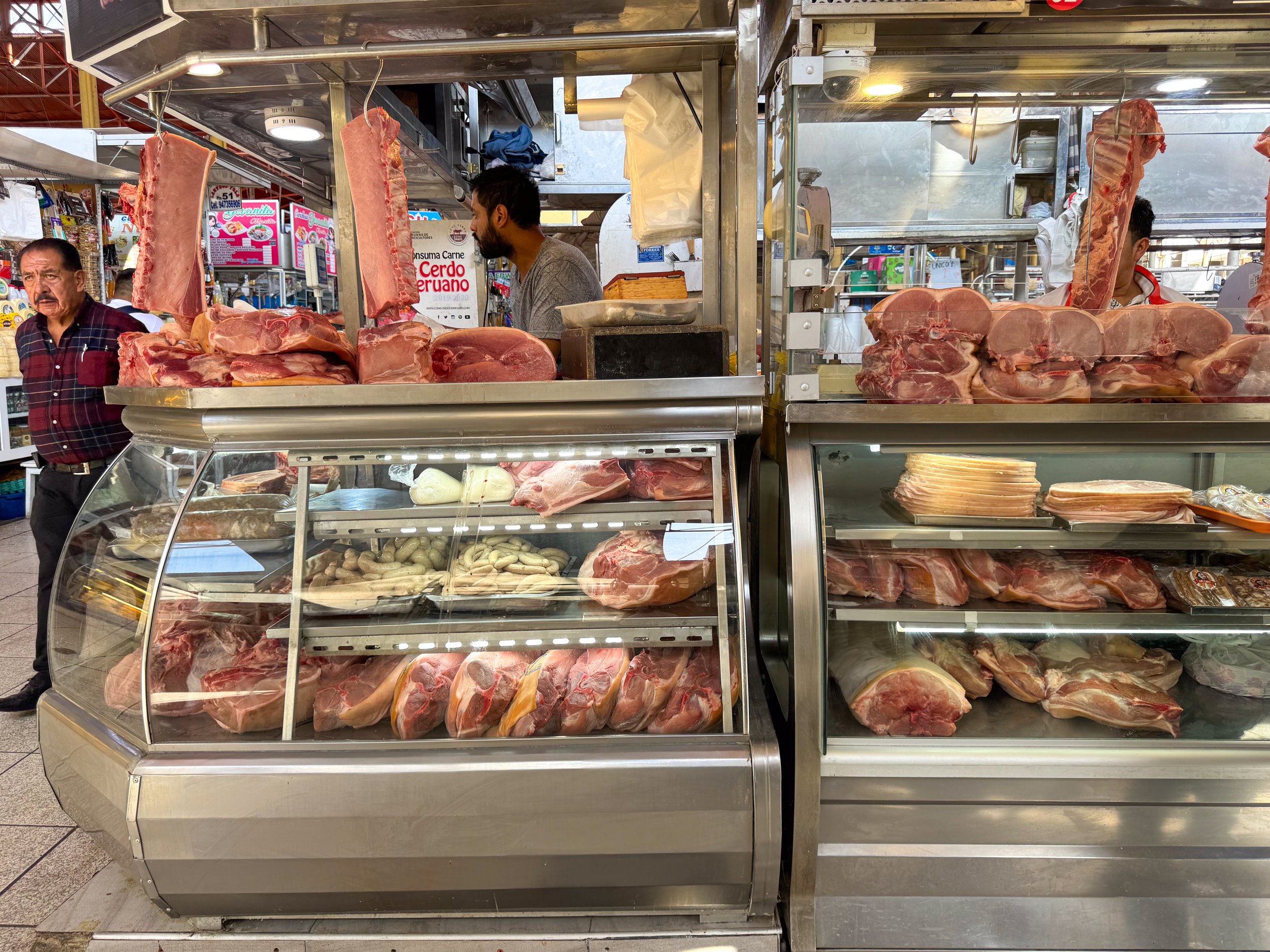
San Camilo Market. A central market with vendors selling selling fruit from towering shelves, baskets filled with potatoes, wheels of Peruvian cheese, aisles of freshly butchered with meat and fish, pillowy breads, purple and yellow chicha, bins of coca leaves and rows of textiles. We left with a bag of breads and fruits including dragonfruit, chermoya, pepinos melones, avocado and blueberries.
Another reason to visit the market is for the street food and inexpensive lunches. We bought potato salteñas and empanadas from a vendor outside of the market and sat down at one of the restaurants inside for pescado frito con arroz verde and a cusquena, only spending 10 Sol per plate.
Where to Eat and Drink
Chicha por Gaston Acurio. An elegant restaurant with a warm terracotta colored interior lined with Peruvian clay pots and suspended basket lights. The menu includes traditional Peruvian cuisine like guinea pig and alpaca dishes, purple corn (chicha) different types of ceviche, chupe de camaron, picarones, Peruvian wine and cocktails like the pisco sour and chilcano. We came here with friends to celebrate Devin’s 30th birthday!
La Huerta del Loncco. A lunch spot with contemporary Peruvian dishes and a shaded outdoor patio overlooking the city. We ordered the choclo con queso, ceviche, potatoes and grilled seafood in ocopa sauce and queso salad.
Dimas Restaurante. A charming restaurant inside a vaulted white volcanic stone dining room with a range of Peruvian and international dishes. We shared the brocoli cream soup and tuna tartare made with avocado, mango and passion fruit.
Zig Zag Restaurant. A restaurant that specializes in meat dishes and wines. We came here to enjoy a carafe of sangria before dinner in their historic dining room built from white volcanic stones and a wrought iron spiral staircase designed by Gustave Eiffel.
Puku Puku Arequipa. A rooftop cafe with views of the mountains and volcanos. We came here in the morning for breakfast pasties and ordered Peruvian roasted coffee brewed in a French press and Chemex. They also offer coffee brewed by Aeropress or espresso carafe.
Amaray. A cafe and restaurant on the second floor of an arched building overlooking the Plaza de Armas and Basilica of Arequipa.
Museo del Pisco. A Pisco bar in a historic building made from Arequipa’s iconic white stones. Come here to order Pisco cocktails, taste various types of Pisco or join mixology class.
Zingaro Wine Bar. A wine bar and shop with Peruvian wines. We bought and shared multiple bottles from here including Vittoria Reserva Malbec from the Valle de Ica, Peru and Intipalka Vino Cabernet Sauvignon Syrah Réserva from the Valle de Sol, Peru.
Sunset Rooftop Bar. A rooftop bar at the Le Foyer Hotel with views of the sunset, city, mountains and volcanos. We came here for smoked chicha and Pisco cocktails.
Where to Stay
We stayed at two accommodations during our time in Arequipa. One Airbnb and a boutique hotel
Historic Airbnb. A spacious rental unit in a white volcanic stone and arched room. The public spaces included a living room, luggage lockers and kitchen.
Le Foyer Arequipa. A boutique hotel with simple rooms, luggage store and a rooftop bar.
Katari Hotel At Plaza De Armas. A luxury hotel in the central plaza with beautifully decorated rooms and a roof top restaurant. We visited a friend that was staying here.
Good to Know
Sand Flies. An insect similar to mosquitos. They leave much larger welts after sucking blood. They were present in October and November in Arequipa.
Language. Spanish is the most common and widely spoken language. Few people speak English.
Cash vs Card. Both cash and card were widely accepted. Carry coins and small bills for street food and markets.
For next time…
Next time we visit Arequipa, we plan to venture out of the city and see some of the regions most impressive sights.
Reserva Nacional de Salinas y Aguada Blanca. A high altitude nature reserve home to vicuñas, alpaca and flamingos with a dry grassy landscape, mountains, volcanos, salt water lagoons and rivers. We drove through here on our way to Cusco spotting large groups of vicuñas, llamas and alpaca grazing in the dry grassy terrain as well as bright pink flamingos contrasted against the dark color of the mountain lagoons. Along the road, as we continued into the Andes, we passed through small towns with indigenous Peruvians dressed in colorful attire and freshly shaved llamas wearing coats.
Colca Canyon. The second deepest canyon in the world surrounded by steep mountains and snow covered volcanoes. We would love to visit to spot the condors, hike its trails, swim in the natural hot springs and raft in Colca River.
El Misti Volcano. The prominent conical shaped volcano seen from Arequipa. We would love to take an overnight hike to reach its summit at an elevation over 19,000 ft.
The Peruvian Andes
The Peruvian Andes is breathtaking region, both in altitude and natural beauty. Its mountainous landscape is covered in Incan ruins, snow covered peaks, colorful valleys and terraced farmland with herds of alpaca and llama.
The Peruvian Andes
The Peruvian Andes is breathtaking region, both in altitude and natural beauty. Its mountainous landscape is covered in Incan ruins, snow covered peaks, colorful valleys and terraced farmland with herds of alpaca and llama.
Cusco & The Incan Empire
Within the mountains is the city of Cusco, a sprawling metropolis home to ruins of Incan empire and pre-colonial civilizations. It’s the branching off point for Machu Picchu and numerous sights in The Sacred Valley. Having previously visited Machu Picchu, we used our second trip into the Peruvian Andes to see sights we missed in Cusco and the Sacred Valley.
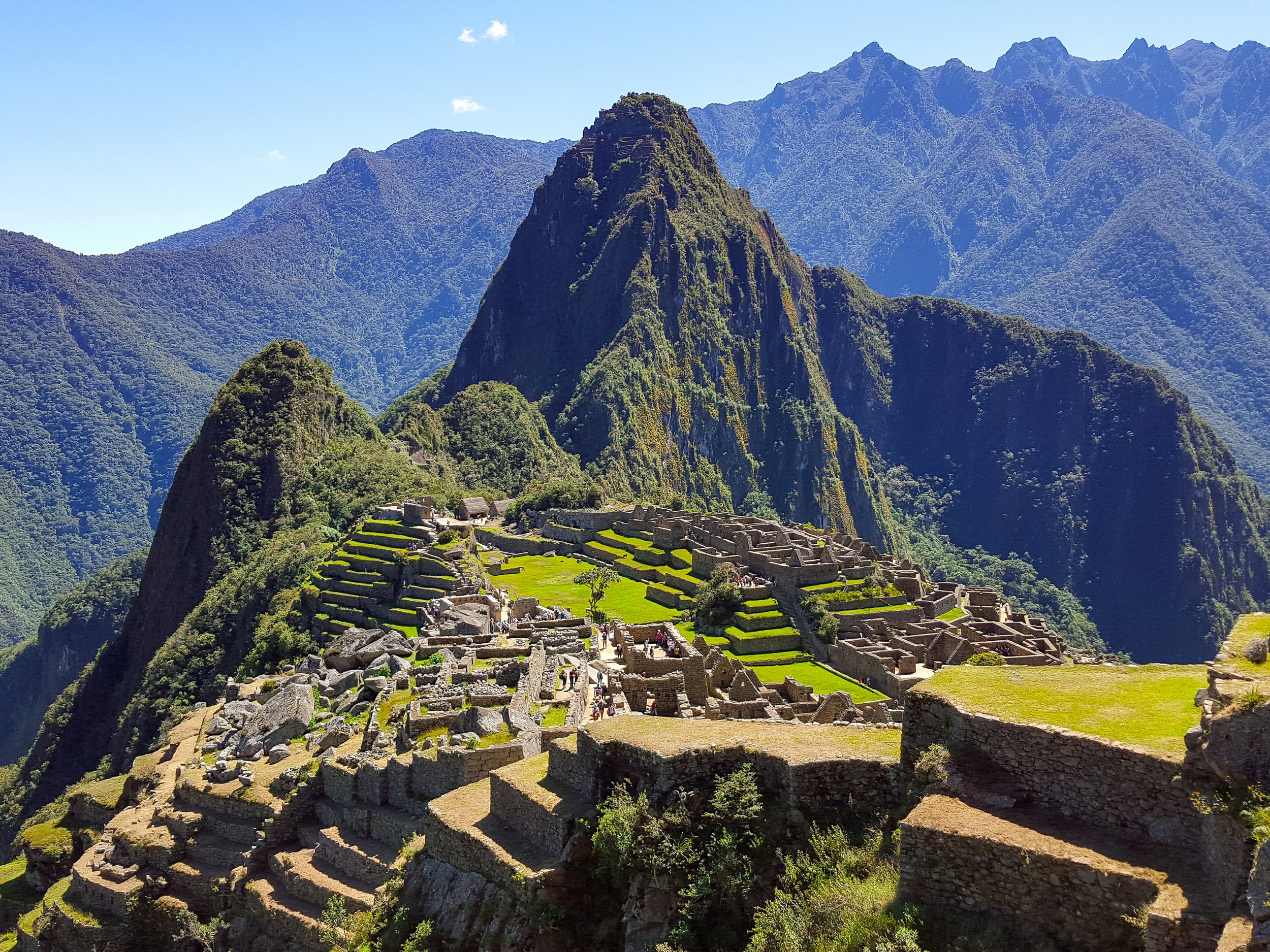
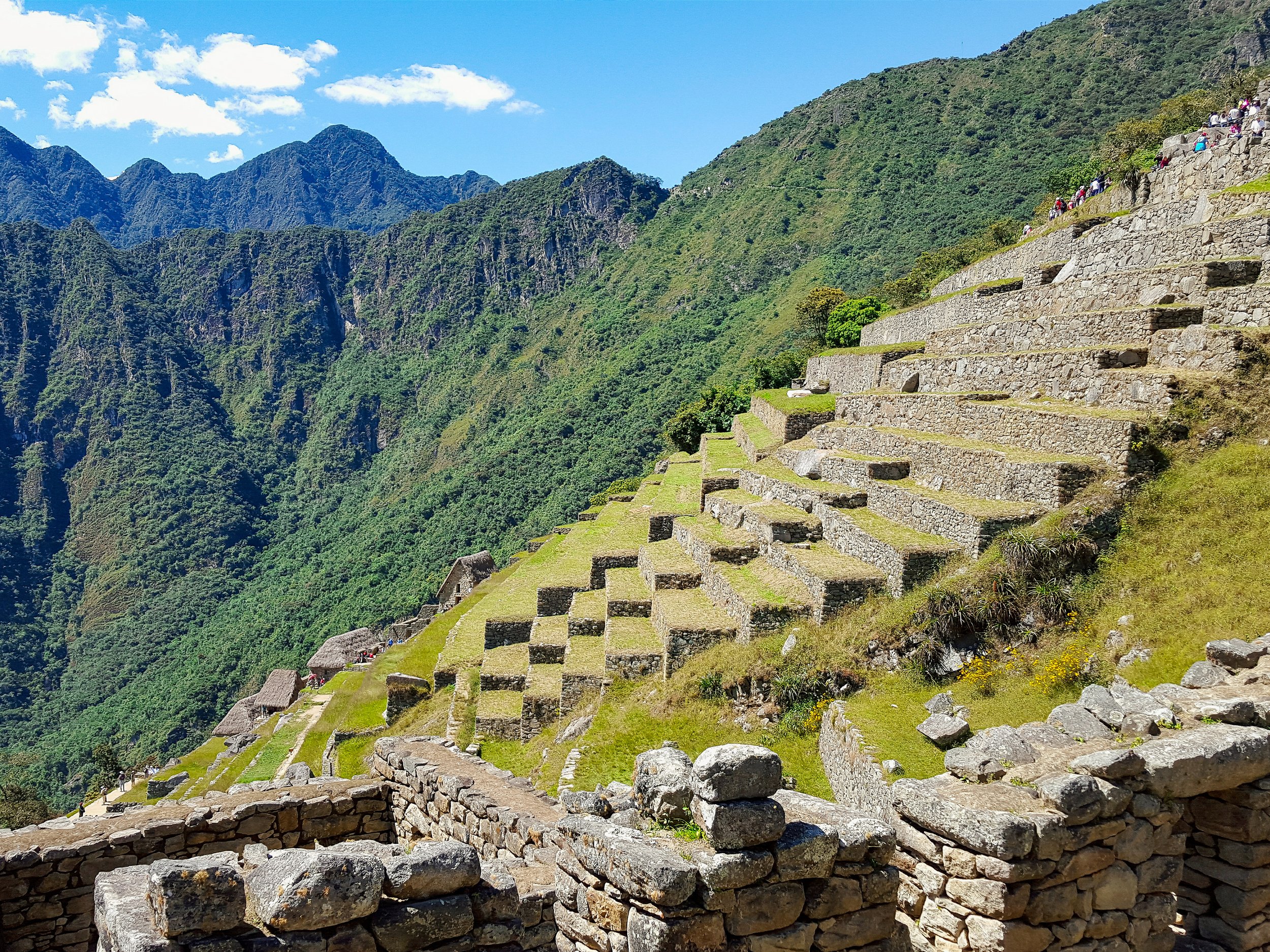
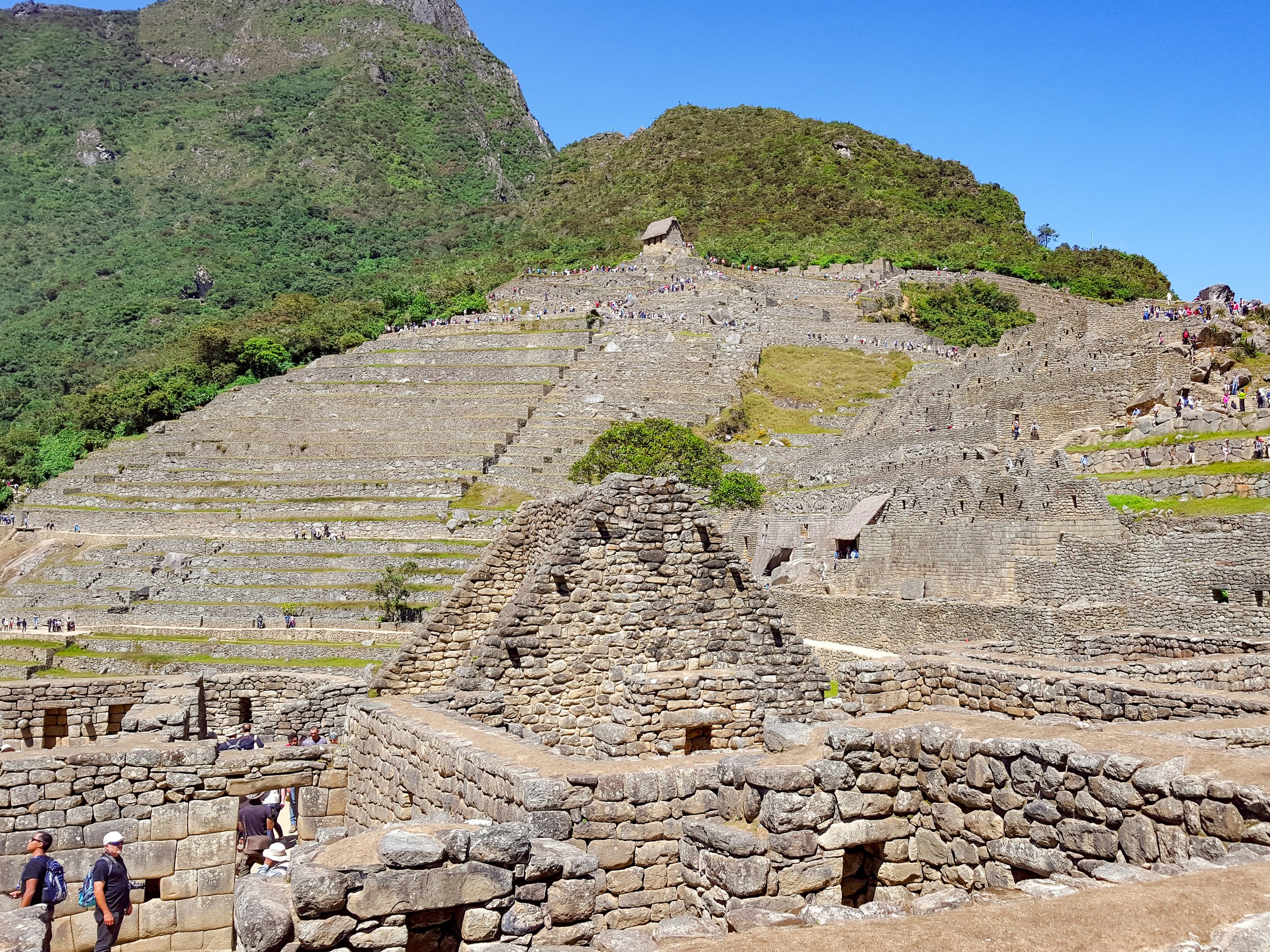
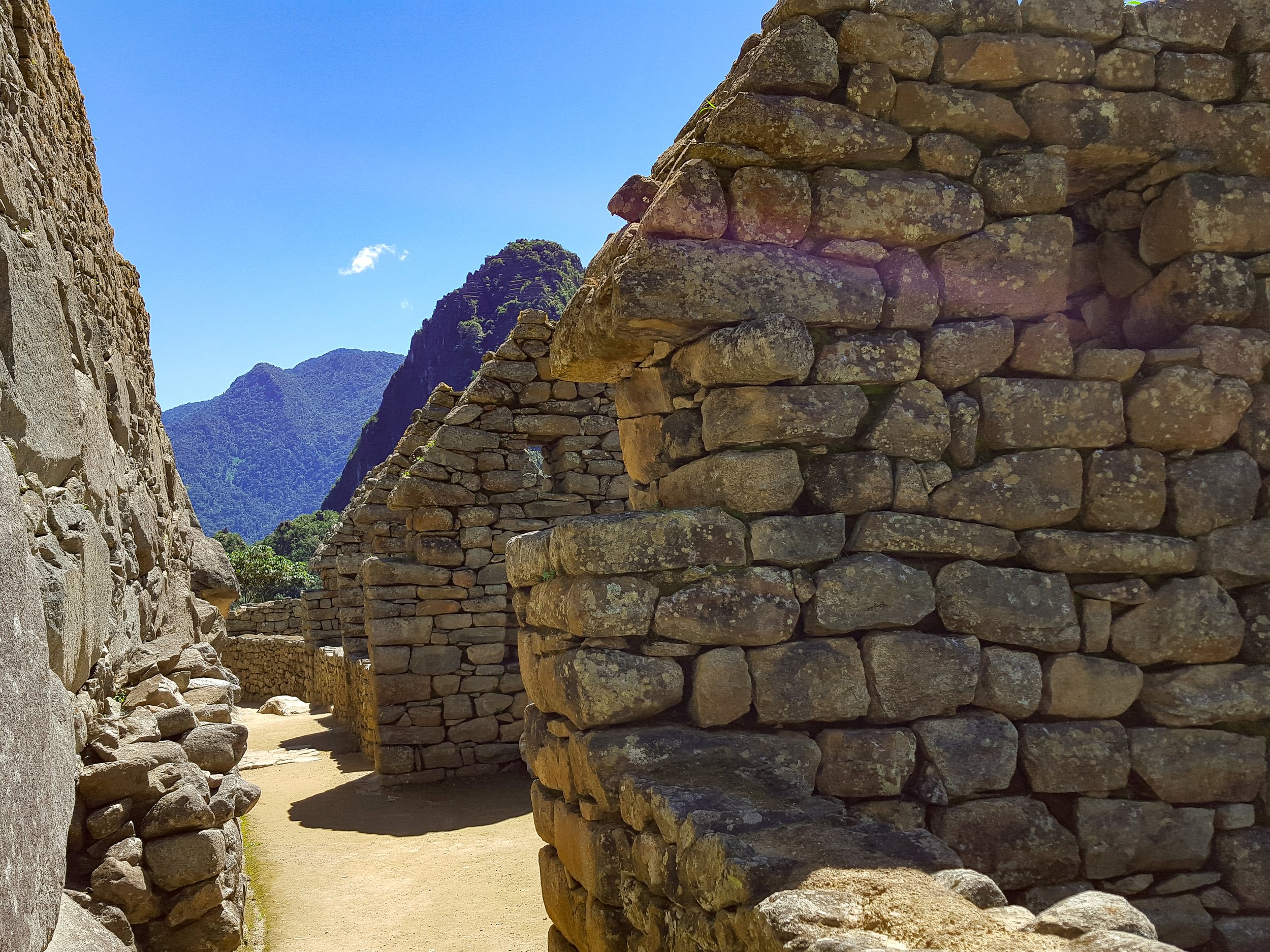
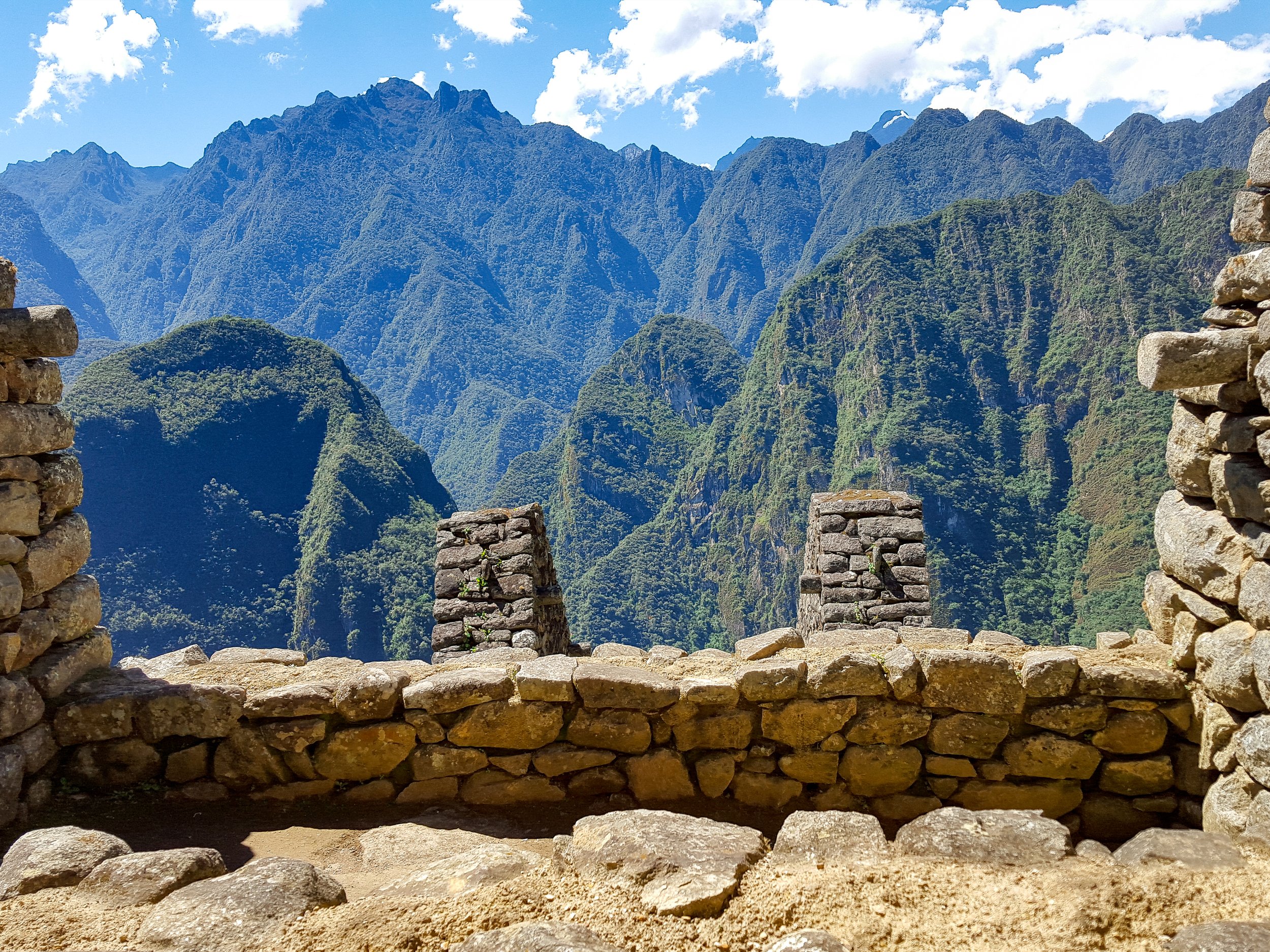
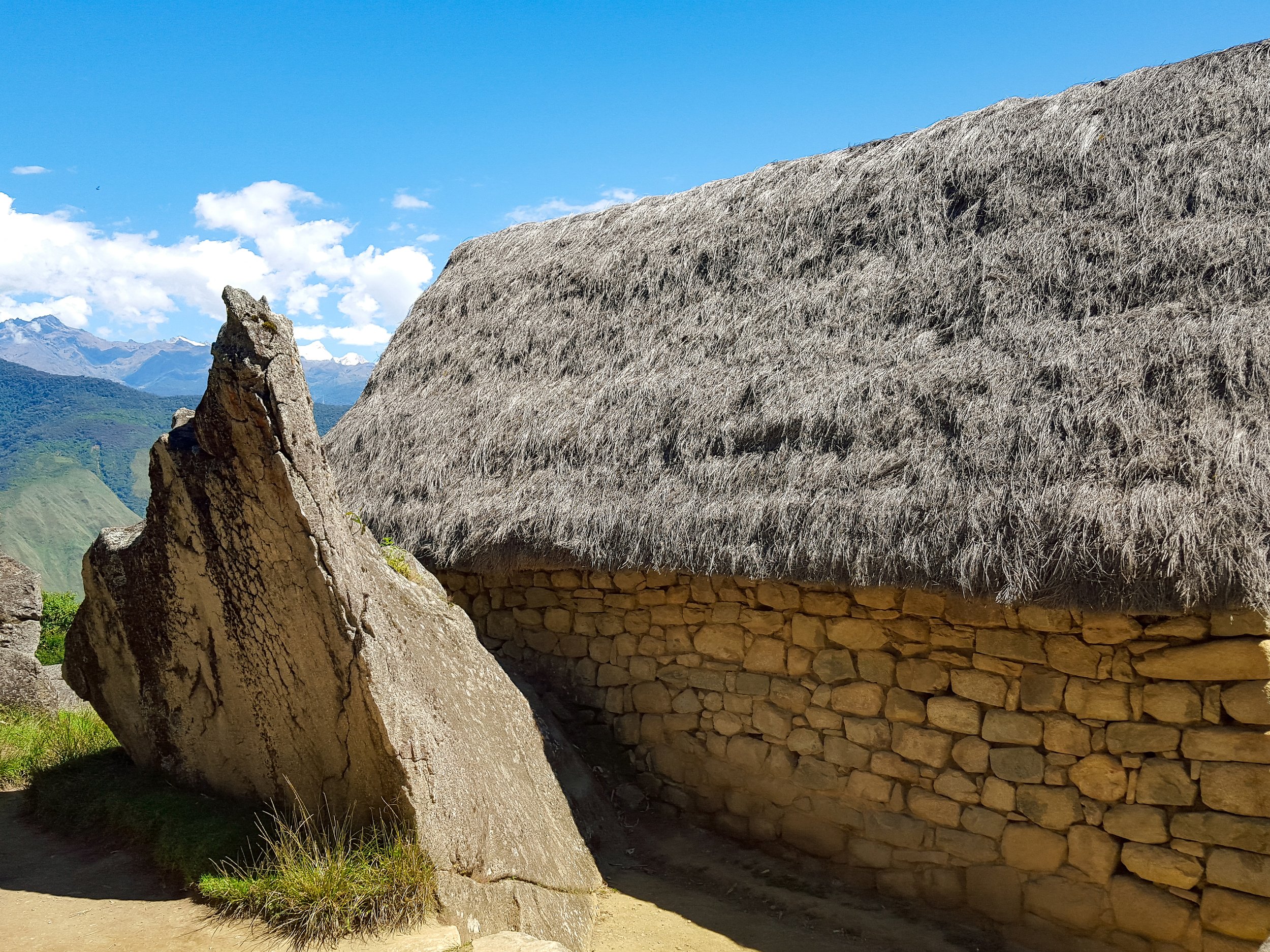
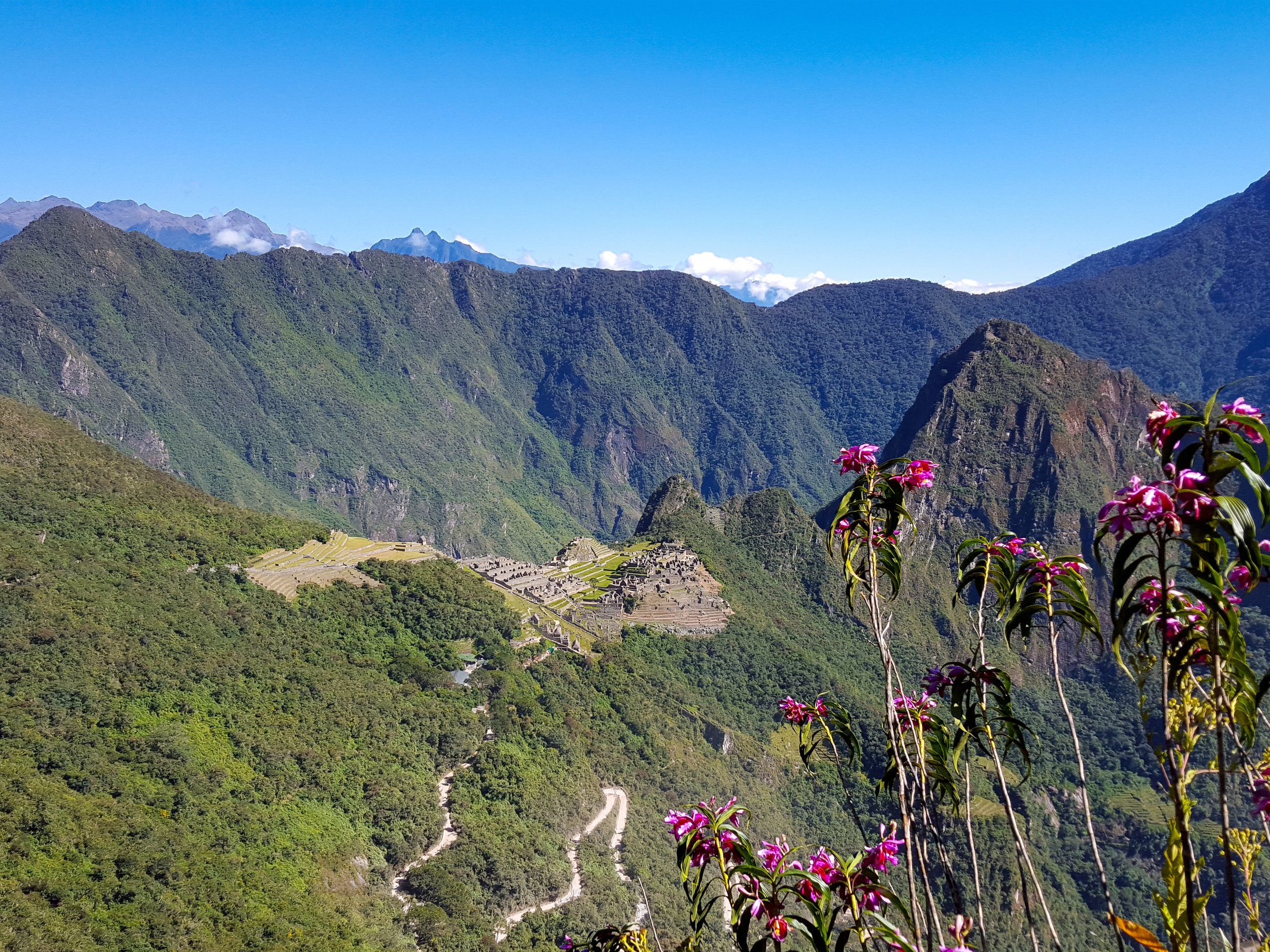
Machu Picchu
Hidden for centuries, Machu Picchu is known as The Lost City of the Incas. The sprawling ruins of the ancient acropolis rest atop a mountain set against the dramatic Andean landscape. The citadel is comprised of residential neighborhoods, layers of agricultural terraces, stone storage structures, ceremonial temples and a central plaza with free roaming llamas. We spent a half day meandering through the ruins of the city, observing it from scenic overlooks and hiking partly along the Inca Trail.
Good To Know:
Access: When we visited in 2016, only 2,500 people were allowed to visit Machu Picchu per day. At the time, we were free to access most areas of the ancient city. As of 2024, the limit has been increased to 4,500 people and “circuits” have been established, regulating the specific areas visitors can access.
Tickets: Book tickets months ahead of time. Given the new “circuits”, it’s best to visit over a two day period booking multiple tickets to see more of the ancient city.
Inca Rail: One of the train companies offering roundtrip rides between Cusco and Machu Picchu through the Sacred Valley. The train has a vintage feel with green painted historic carriages and large viewing windows.
Aguas Calientes
The town at the base of Machu Picchu with hotels, restaurants, bars, an artisan market and thermal hot springs.
Mercado Artesanal. A sprawling artisan market with aisles of vendors selling Peruvian textiles, woven goods and souvenirs underneath a corrugated sheet metal roof. We haggled for baby alpaca blanket and hand painted coasters.
Baños Termales. The thermal hot springs the town of Aguas Calientes is named after. We came here late in the afternoon to relax is the warm water pools before catching our train back to Cusco.
Imperio de los Incas. A road along the Urubamba River with restaurants, bars and hotels overlooking the rapids and riverbank.
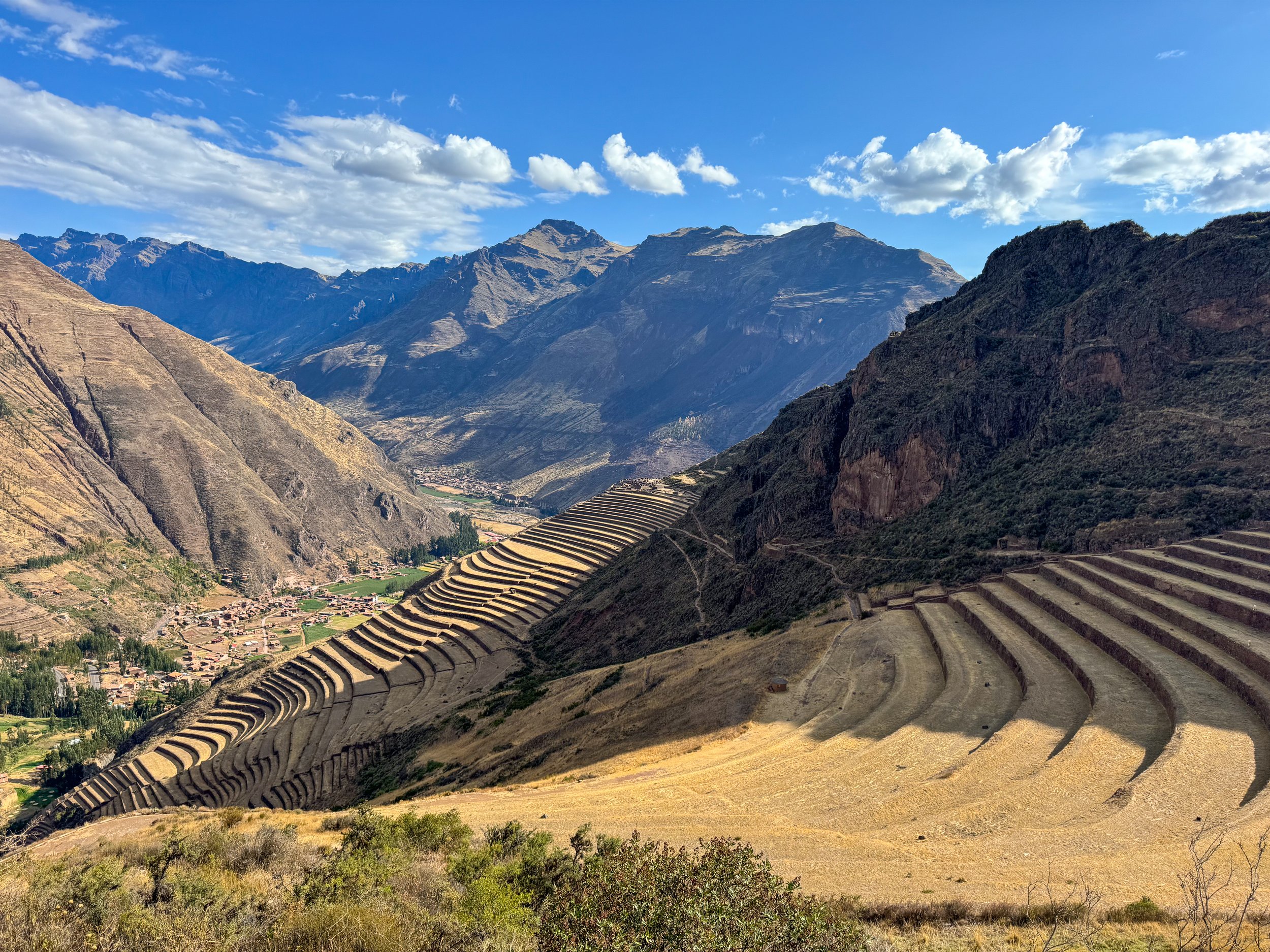
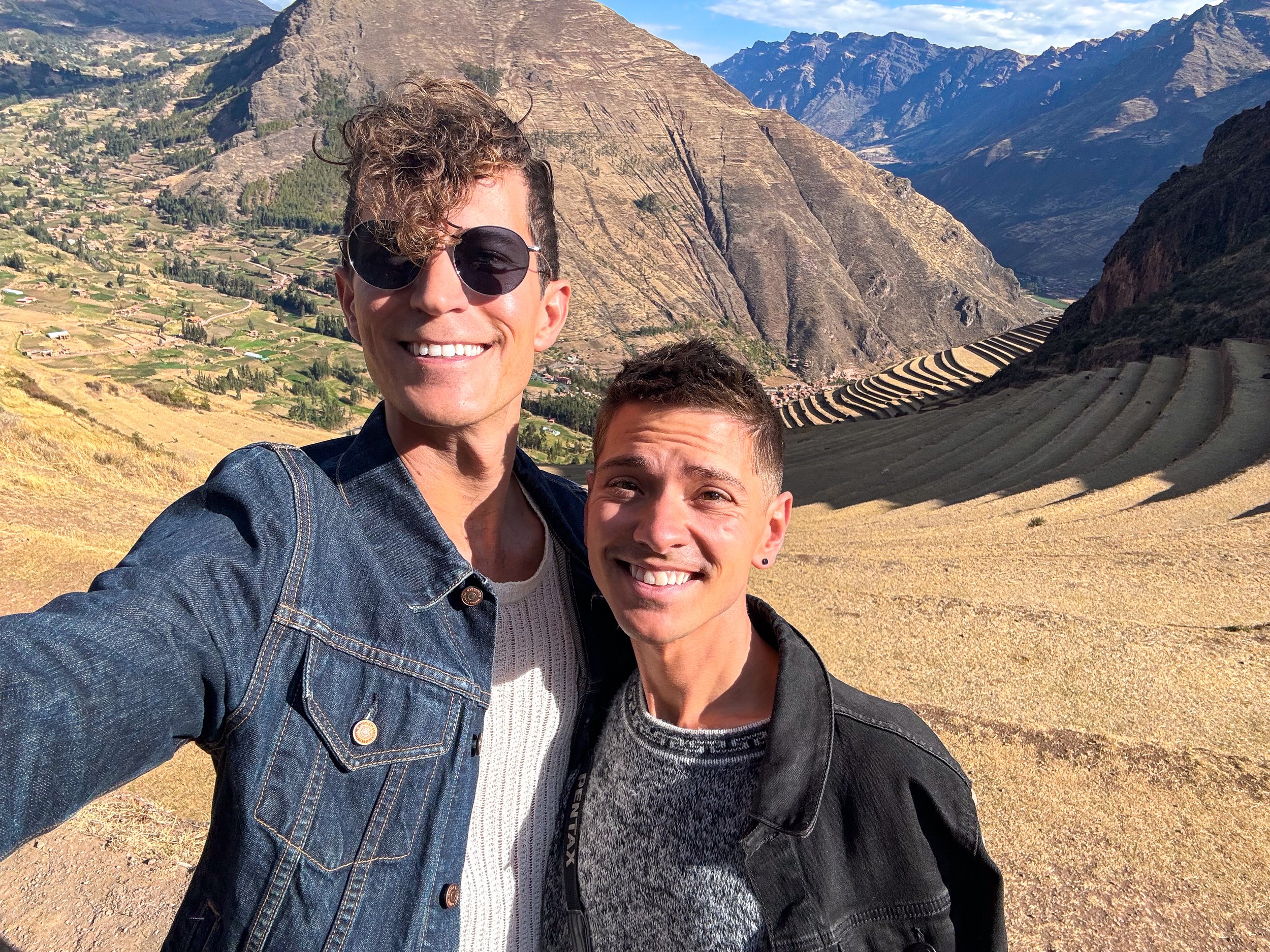
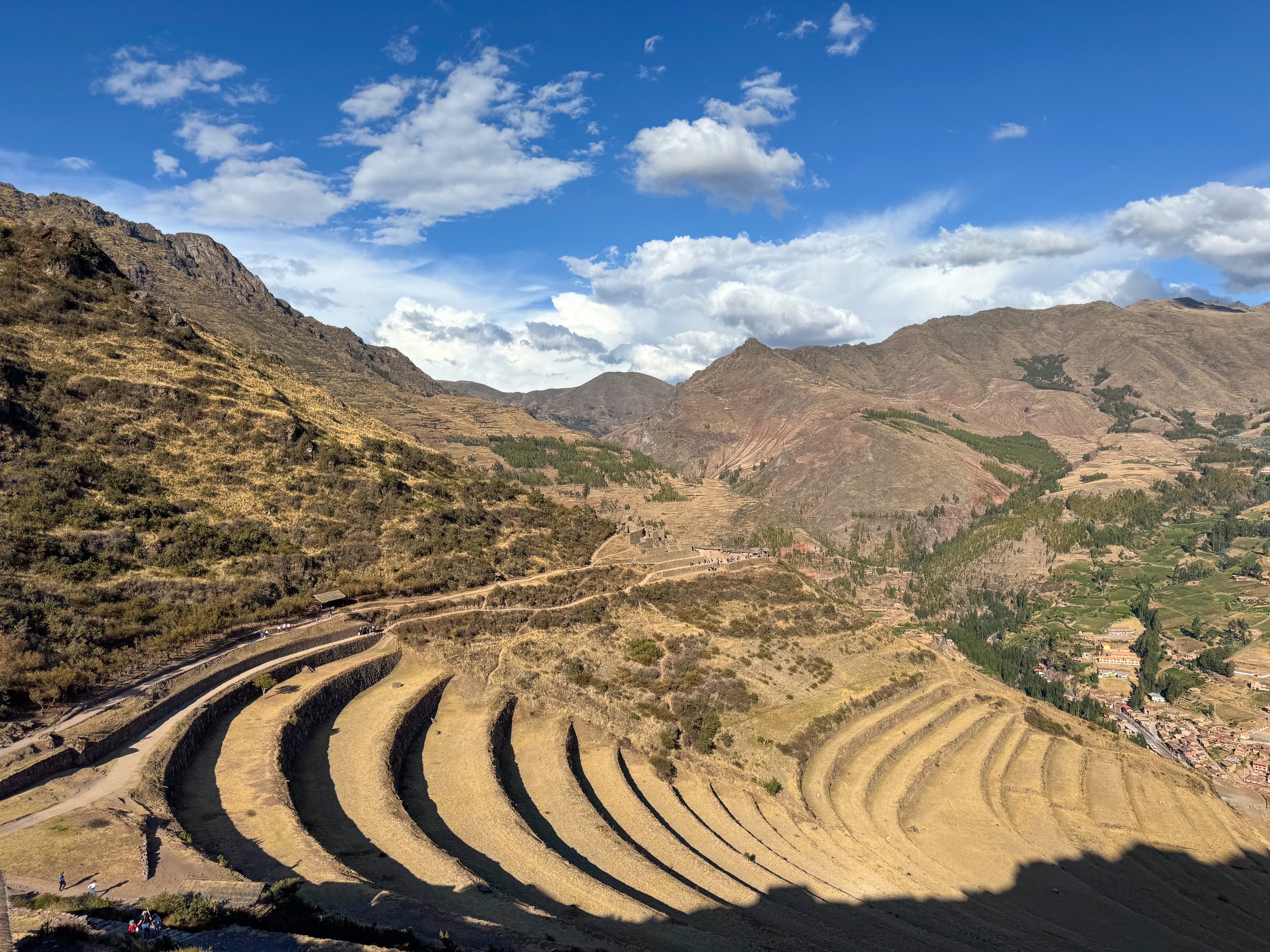
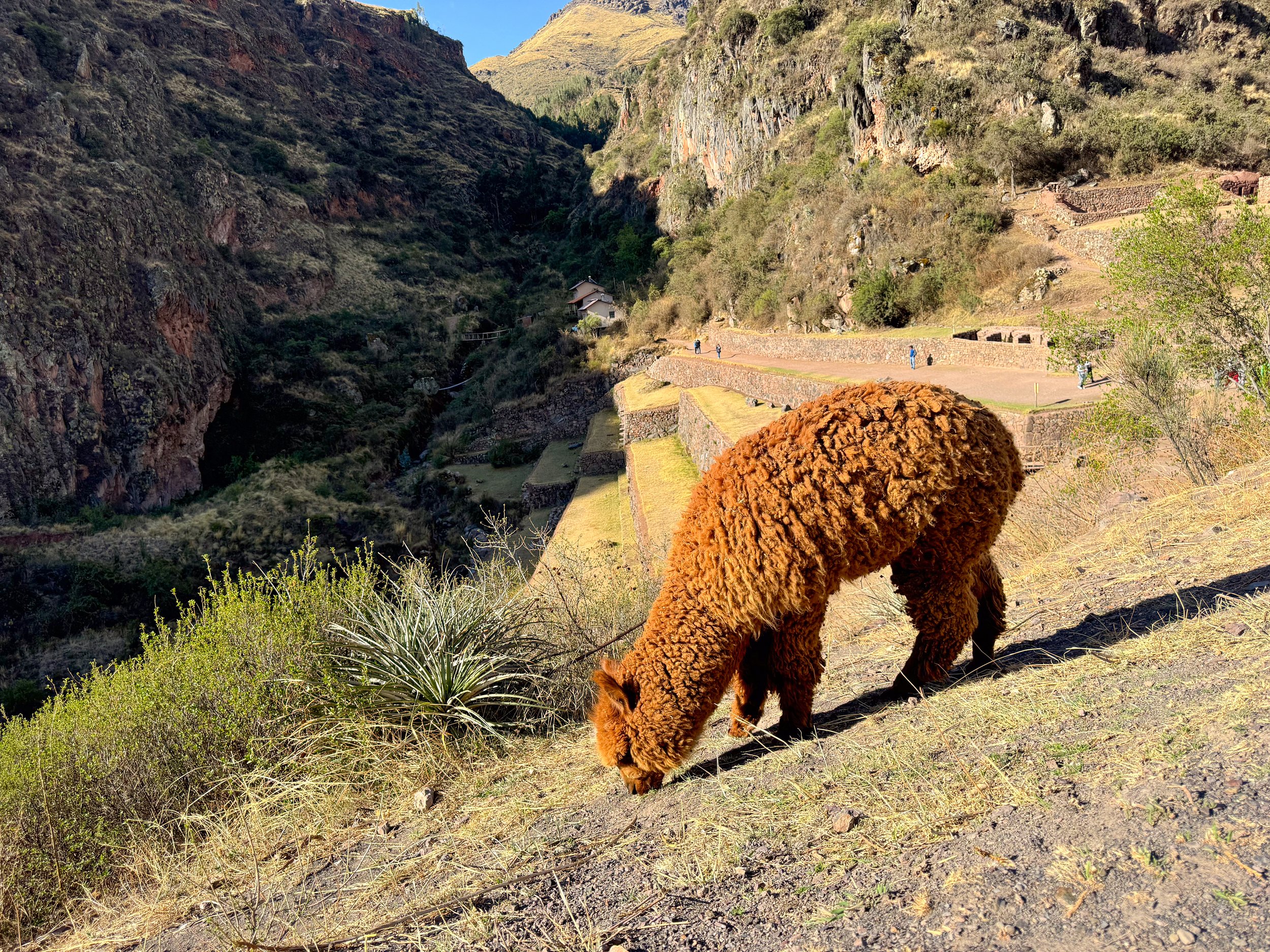
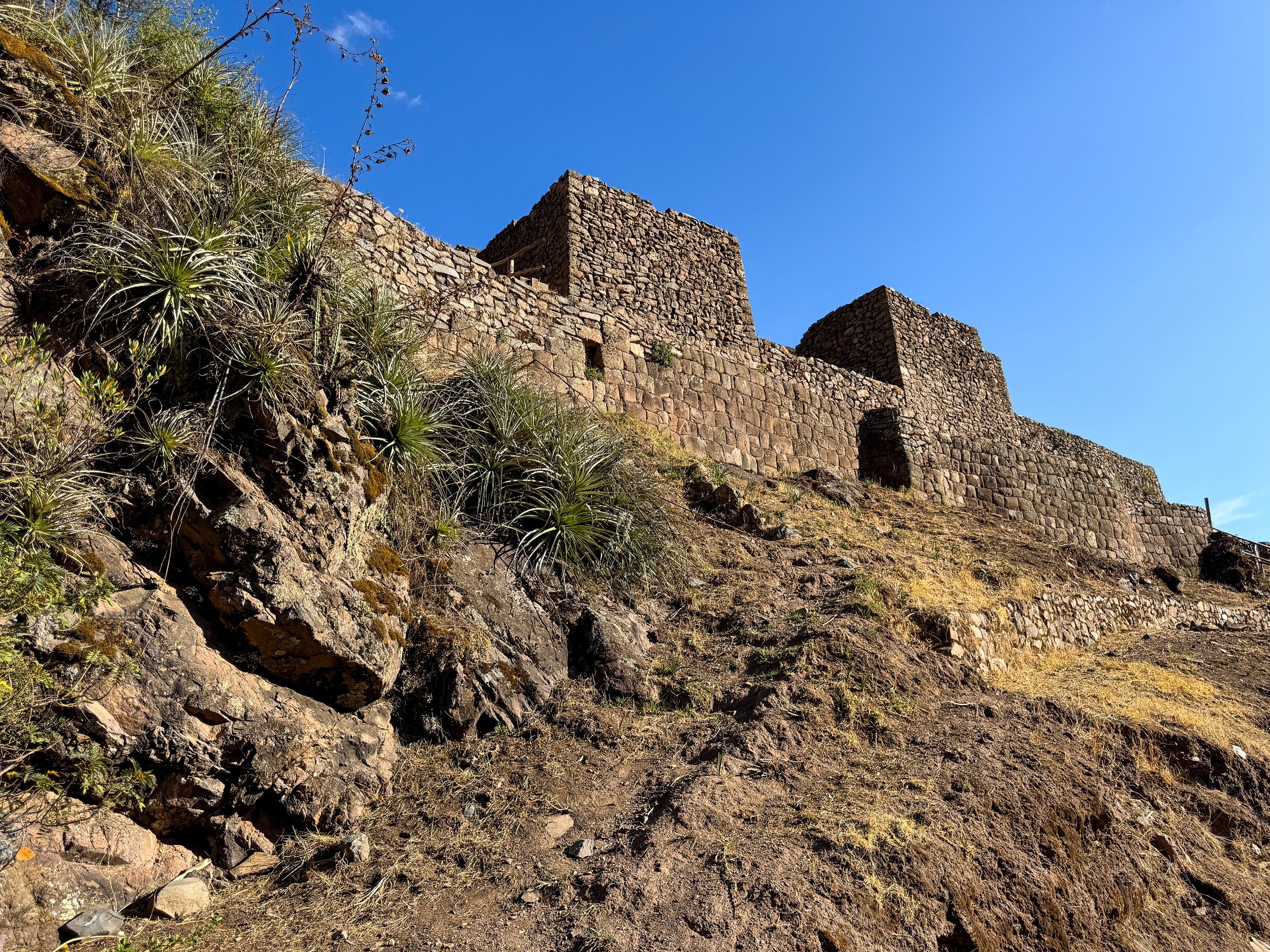
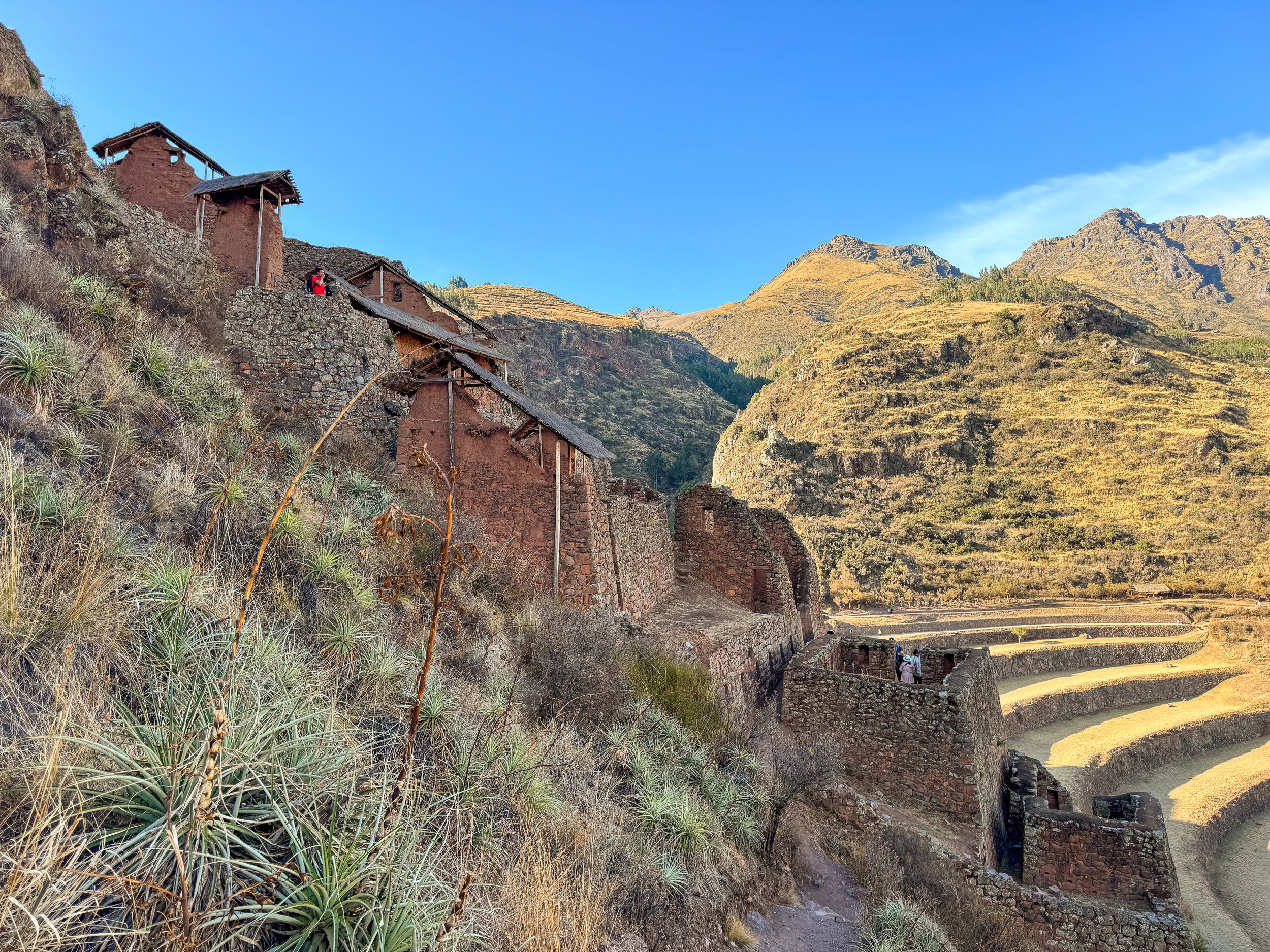
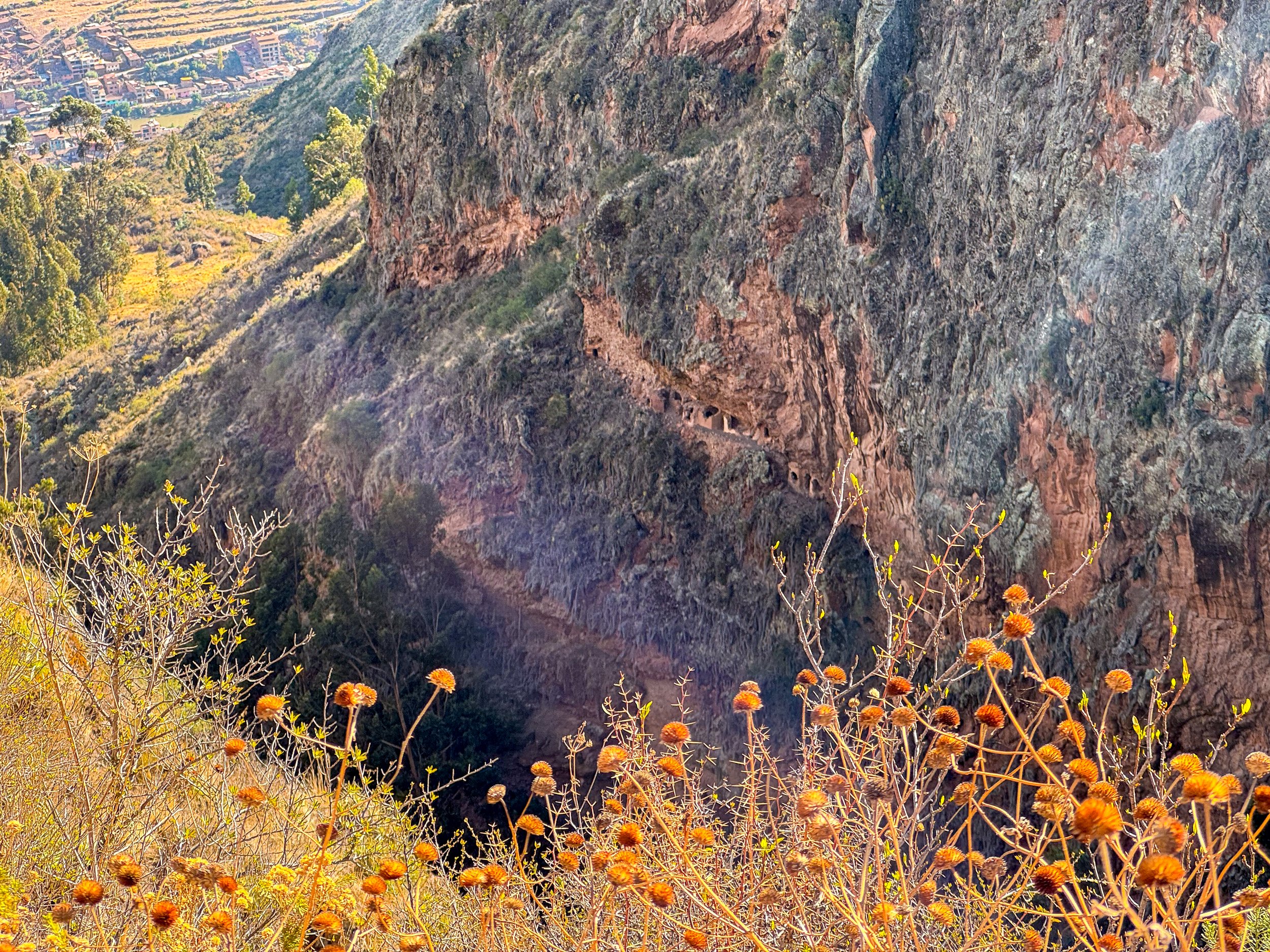
Sacred Valley
The Sacred Valley follows the Urubamba River from Cusco to Machu Picchu past some of the Incan Empire’s most important sights including: Pisac, Salineras de Maras, Moray Terraces and Ollantaytambo. We took a full day private tour from Cusco that brought us to all four sights. Book here!
Pisac Ruins
The Pisac Ruins are home to sprawling agricultural terraces covering the hillside leading to the ruins of a mountaintop city with a maze of stone buildings and staircases leading to its summit overlooking the valley. Along the terraces, llamas and alpacas roam free feeding on the grass. Behind the ancient city is a cemetery built into the vertical cliff with holes where the Incas would bury their dead.
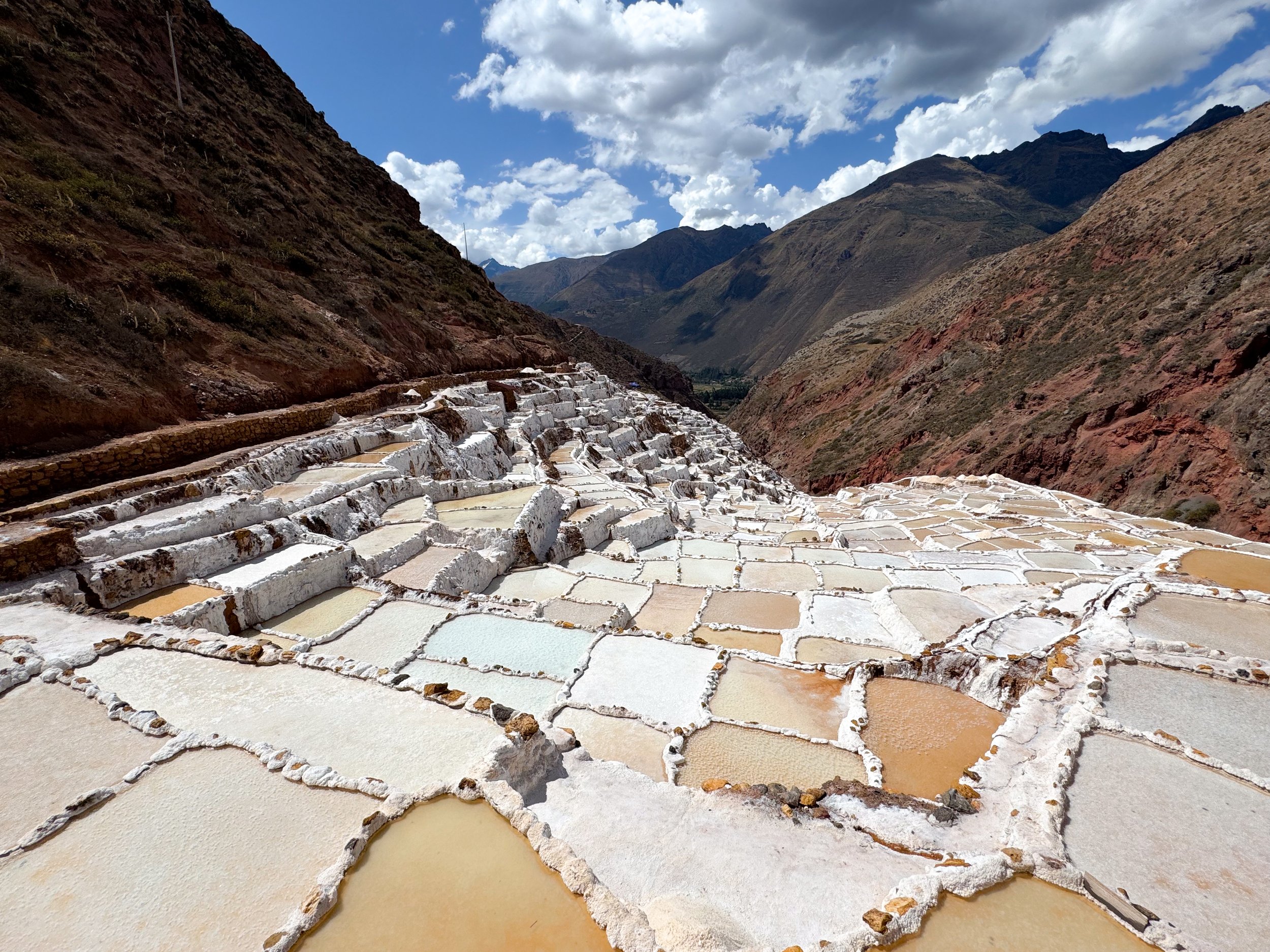
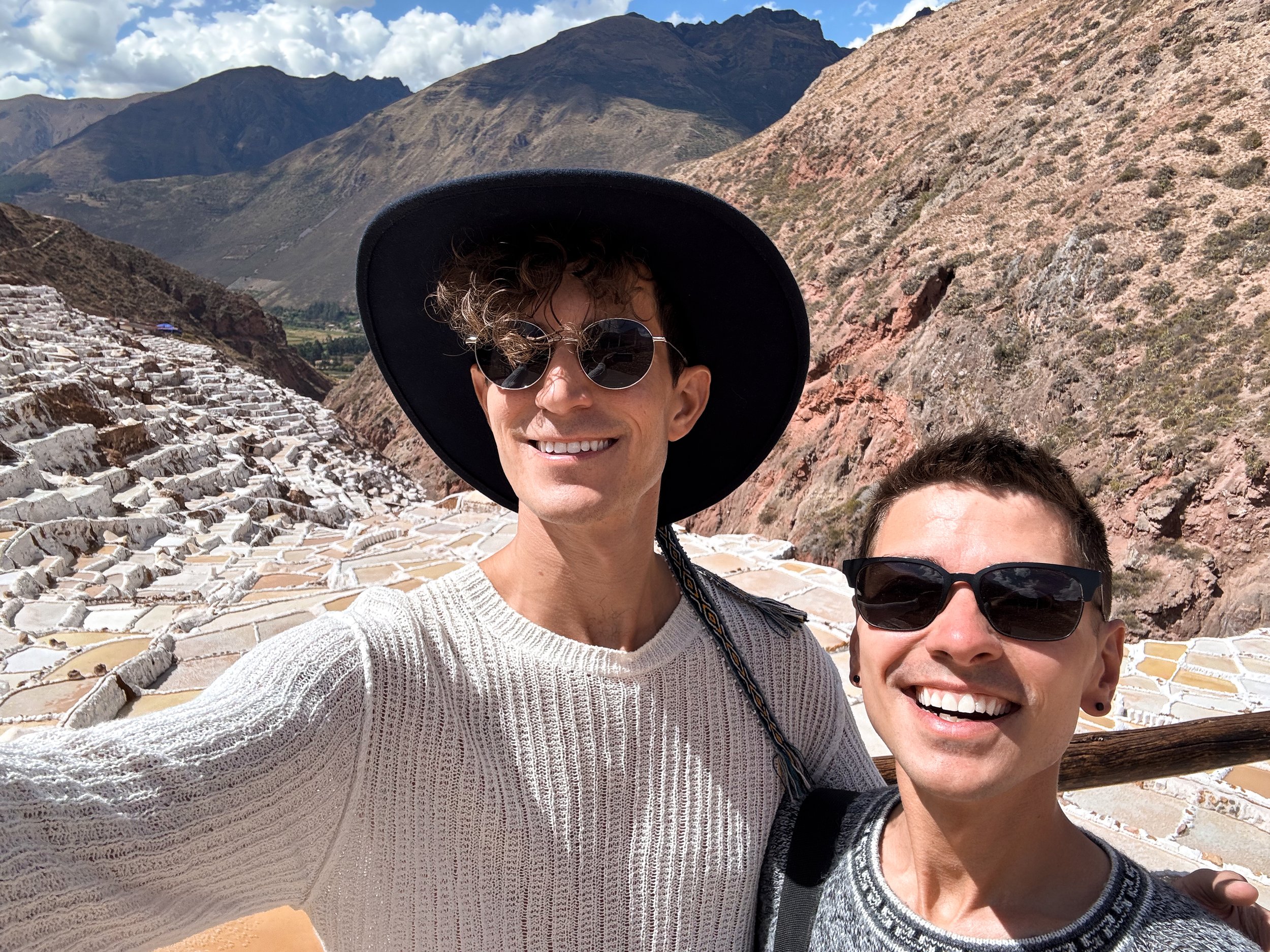
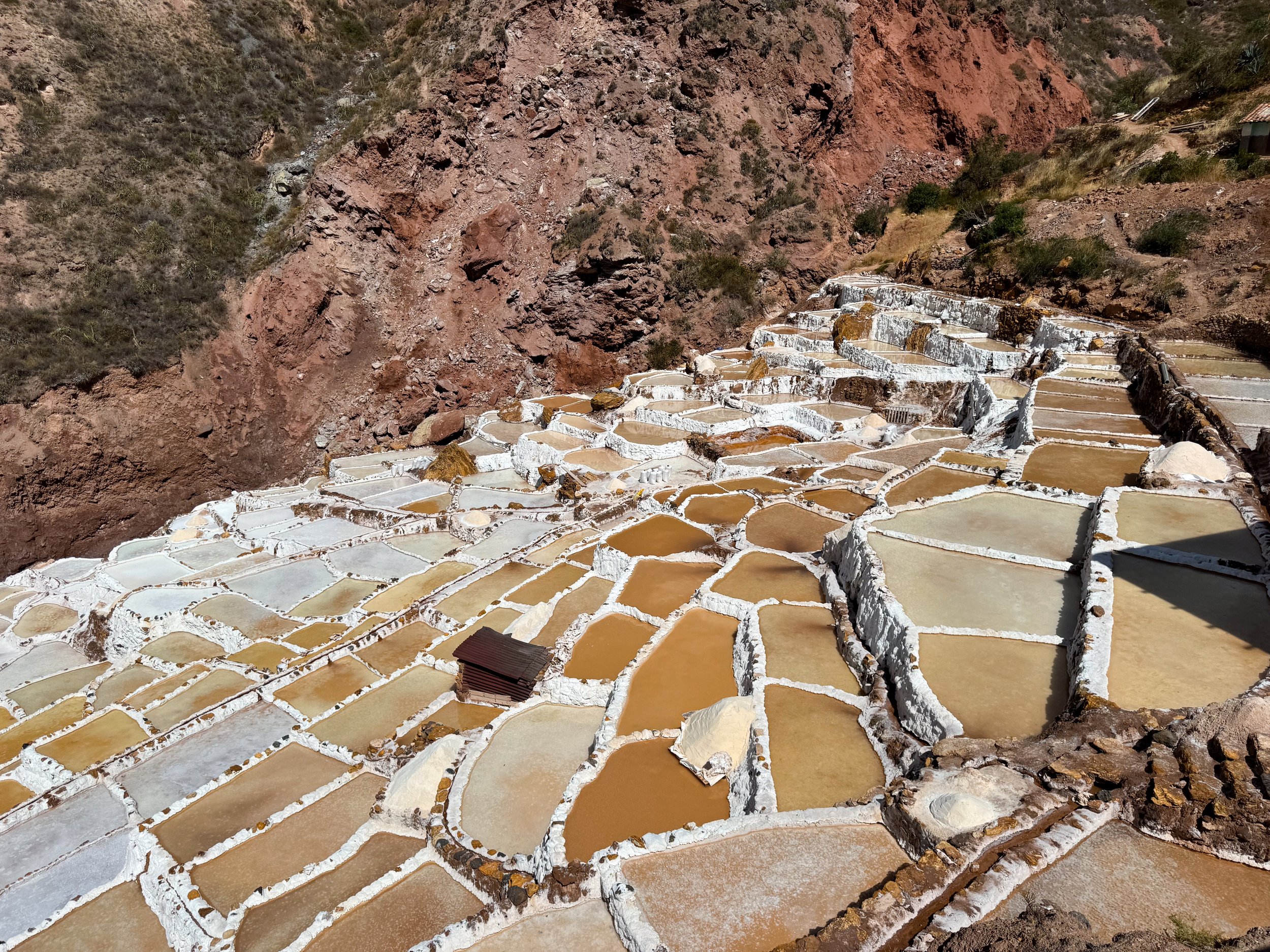
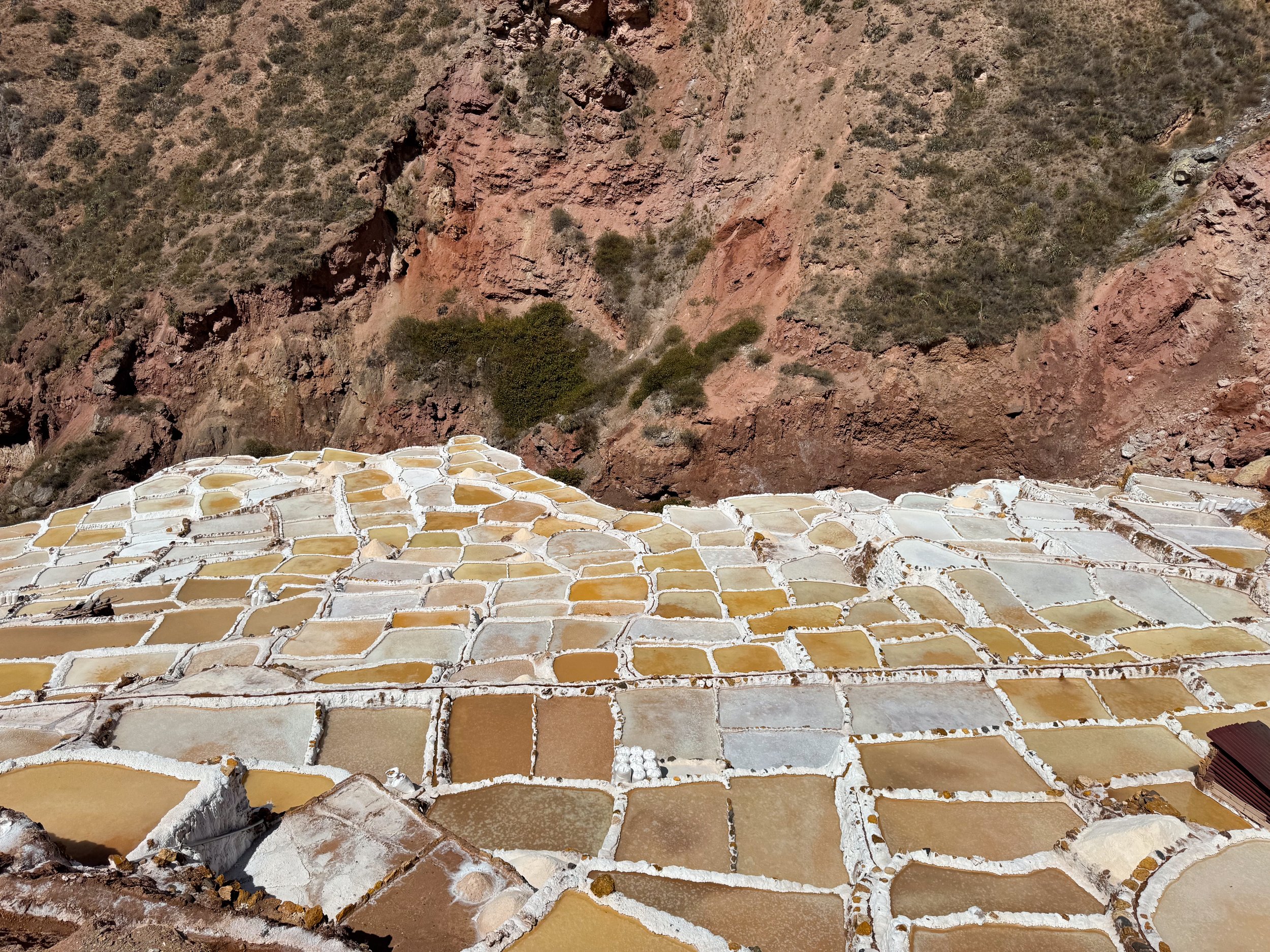
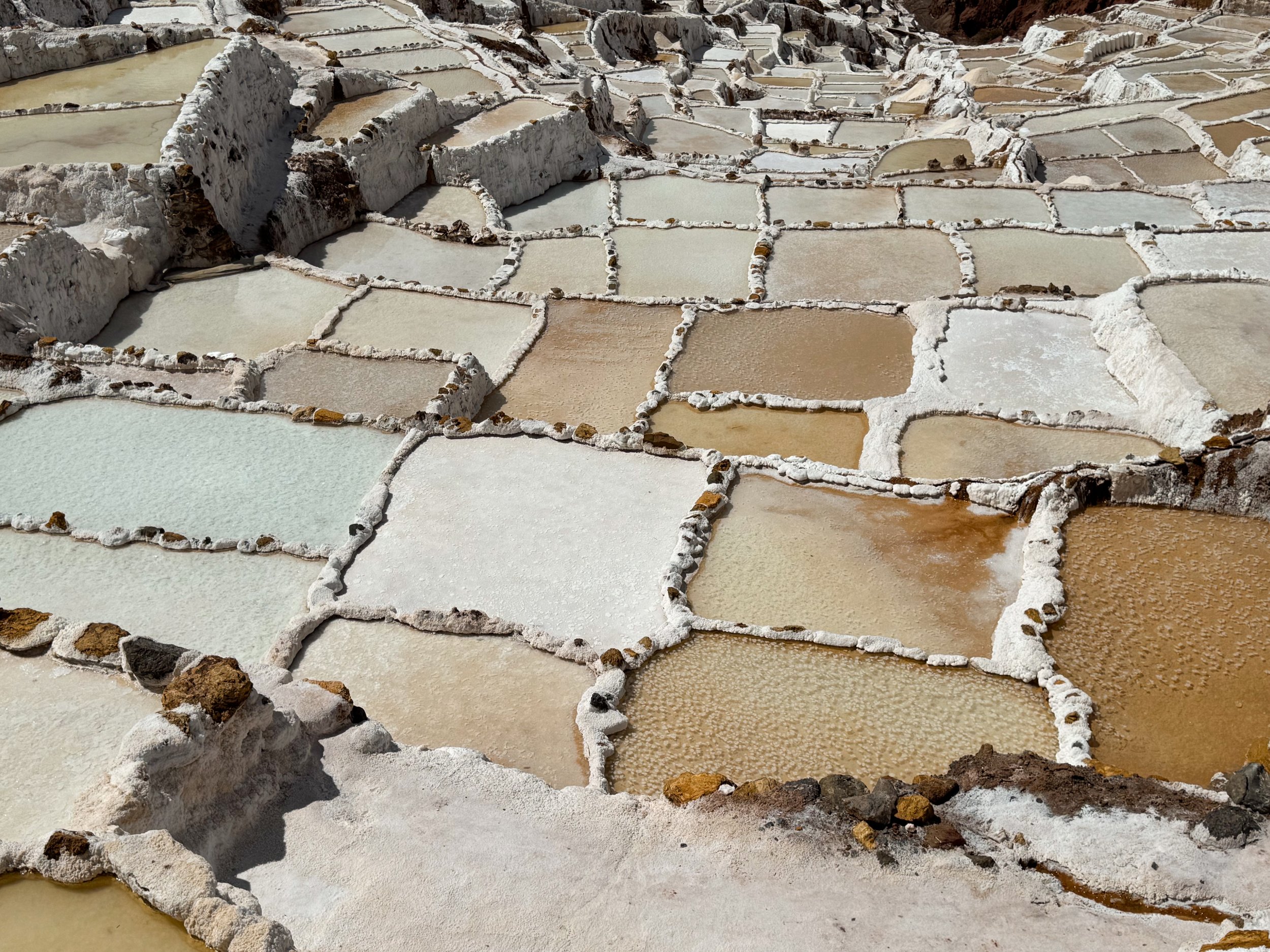

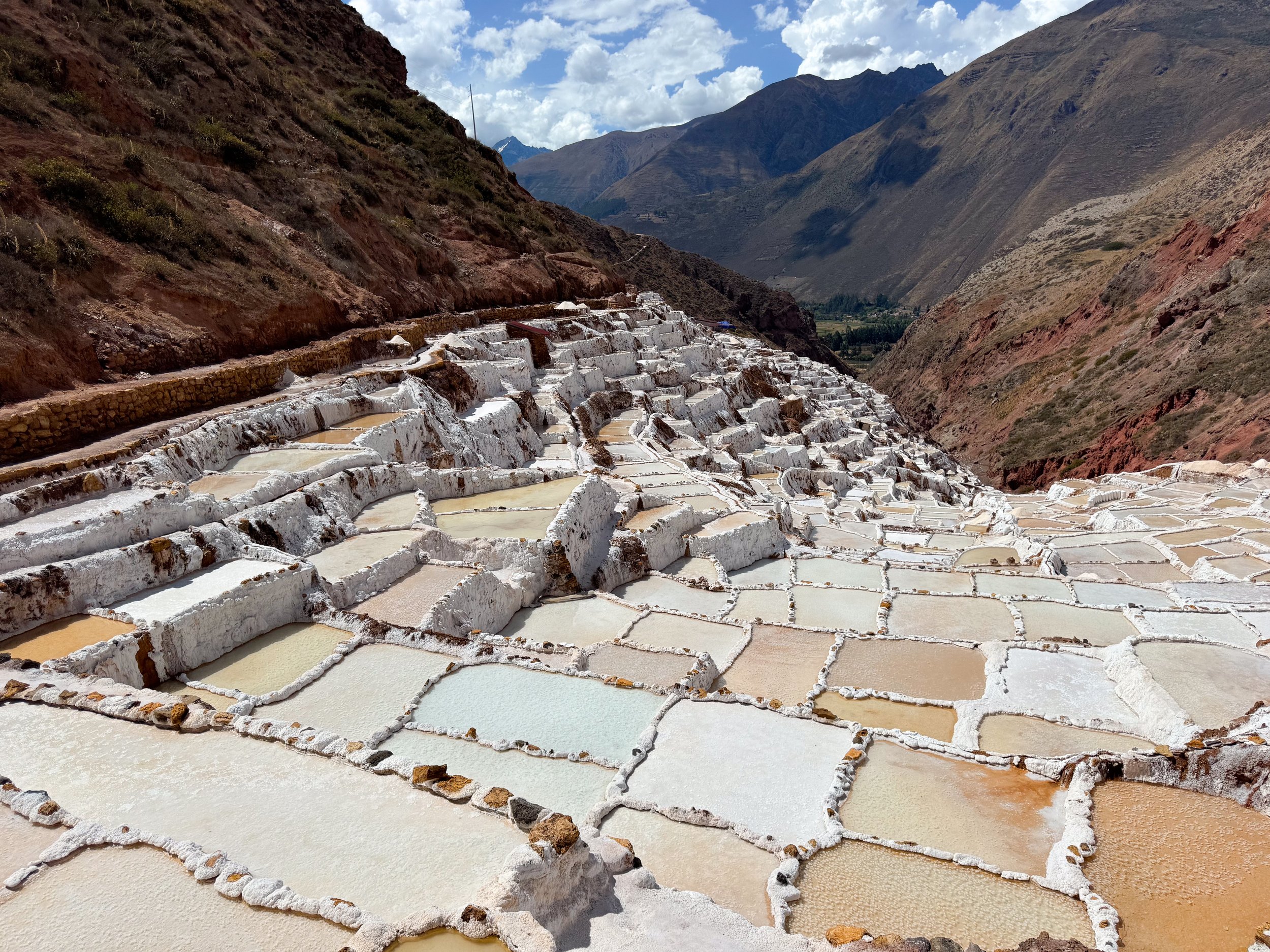
Salineras de Maras
Salineras de Maras is a series of terraced salt pools ranging in color from white to light blue, beige and brown with thin layers of salty spring fed water covering their surfaces. Many of the terraces pre date the Incans and are still in use today for harvesting salt. There are routes with overlooks above the terraces to admire their beauty & structure.
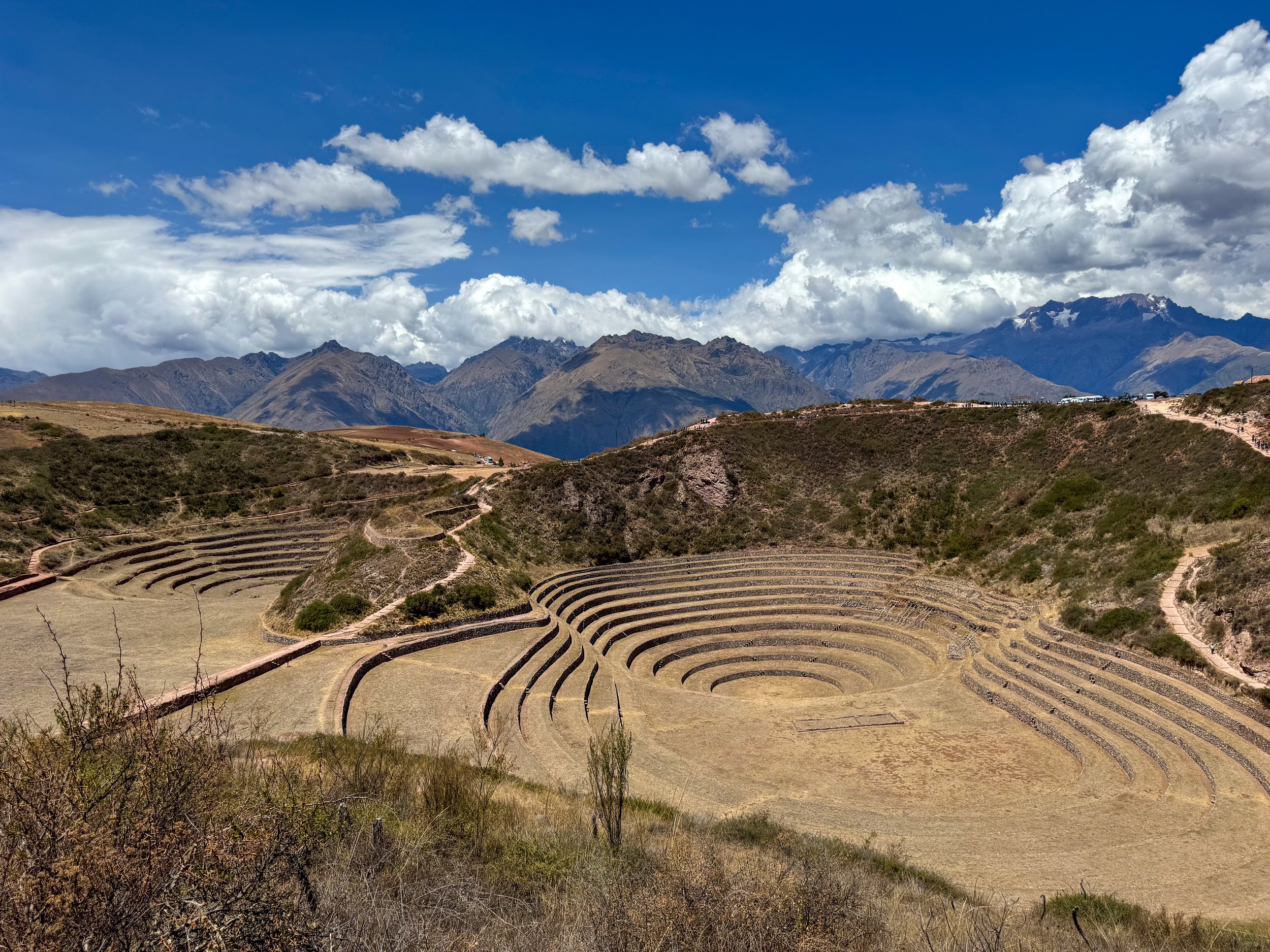
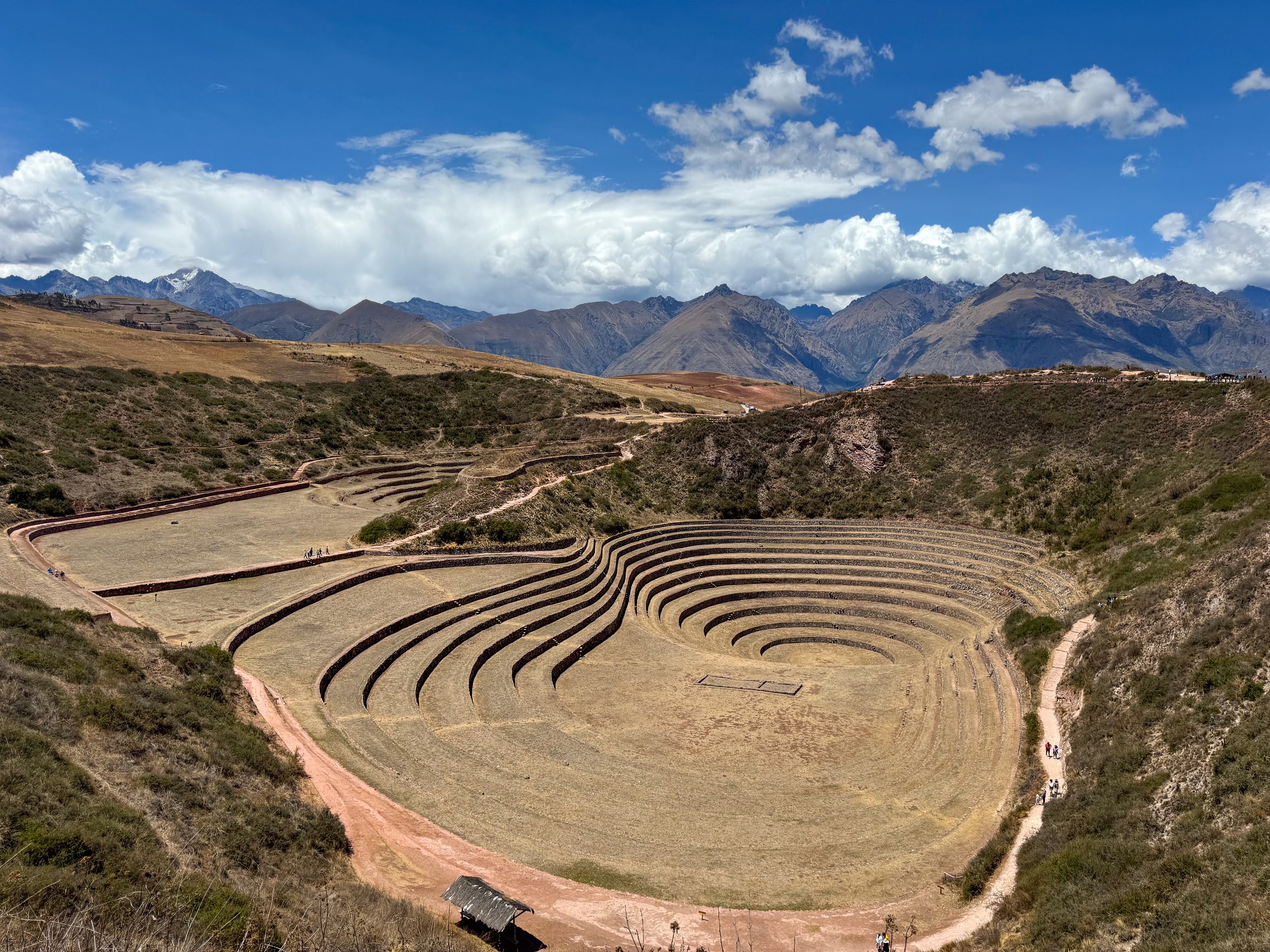
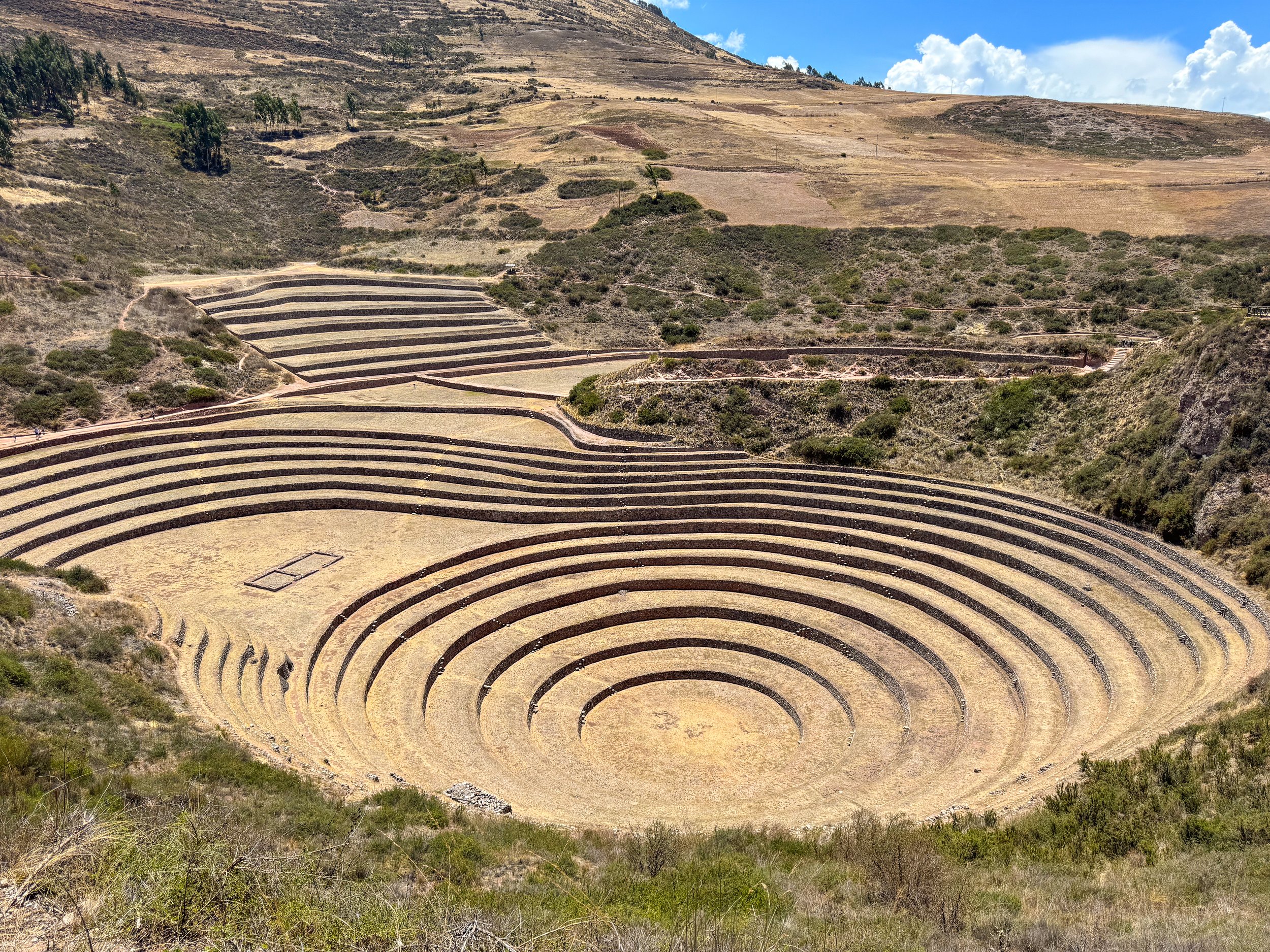
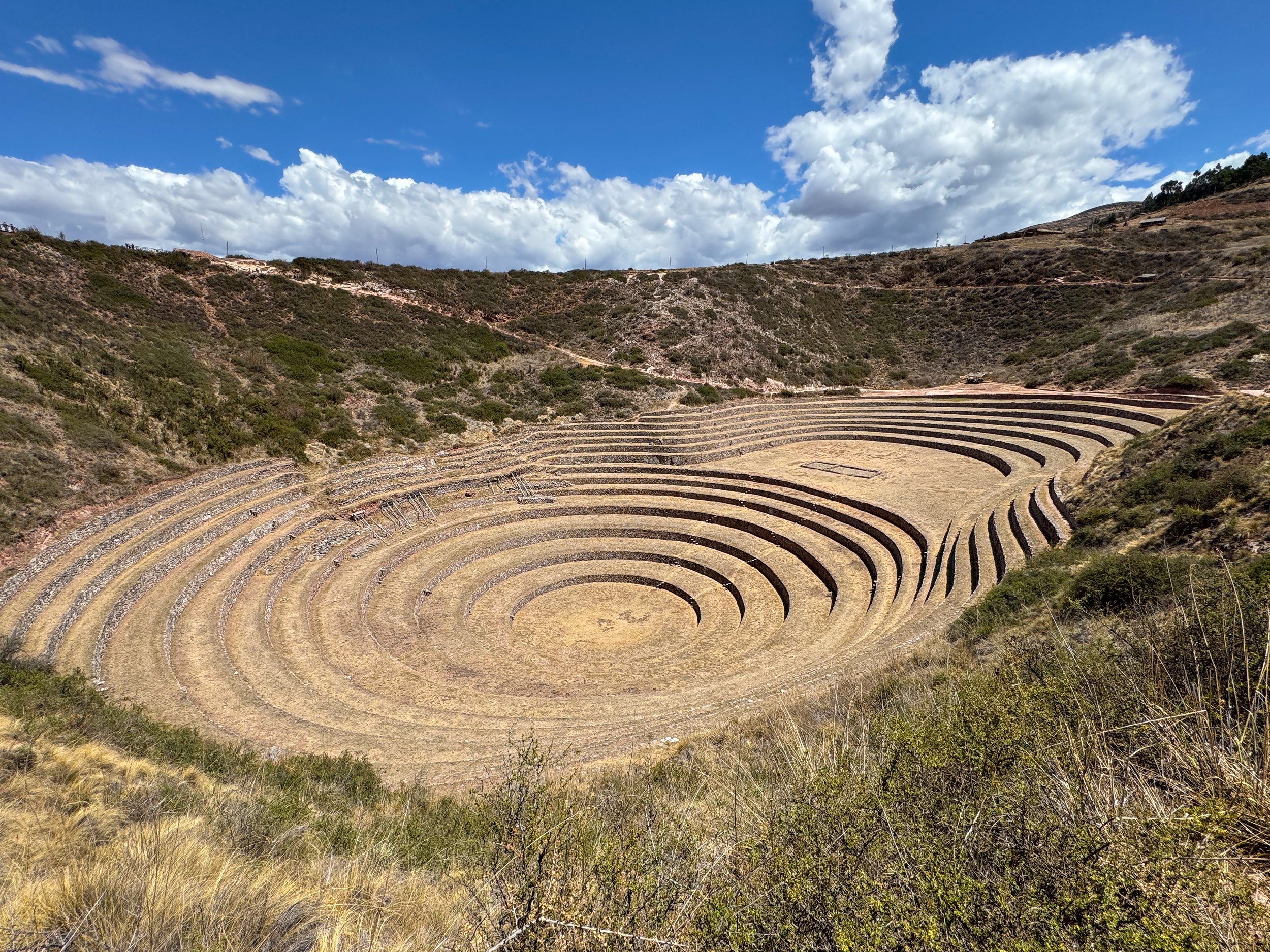
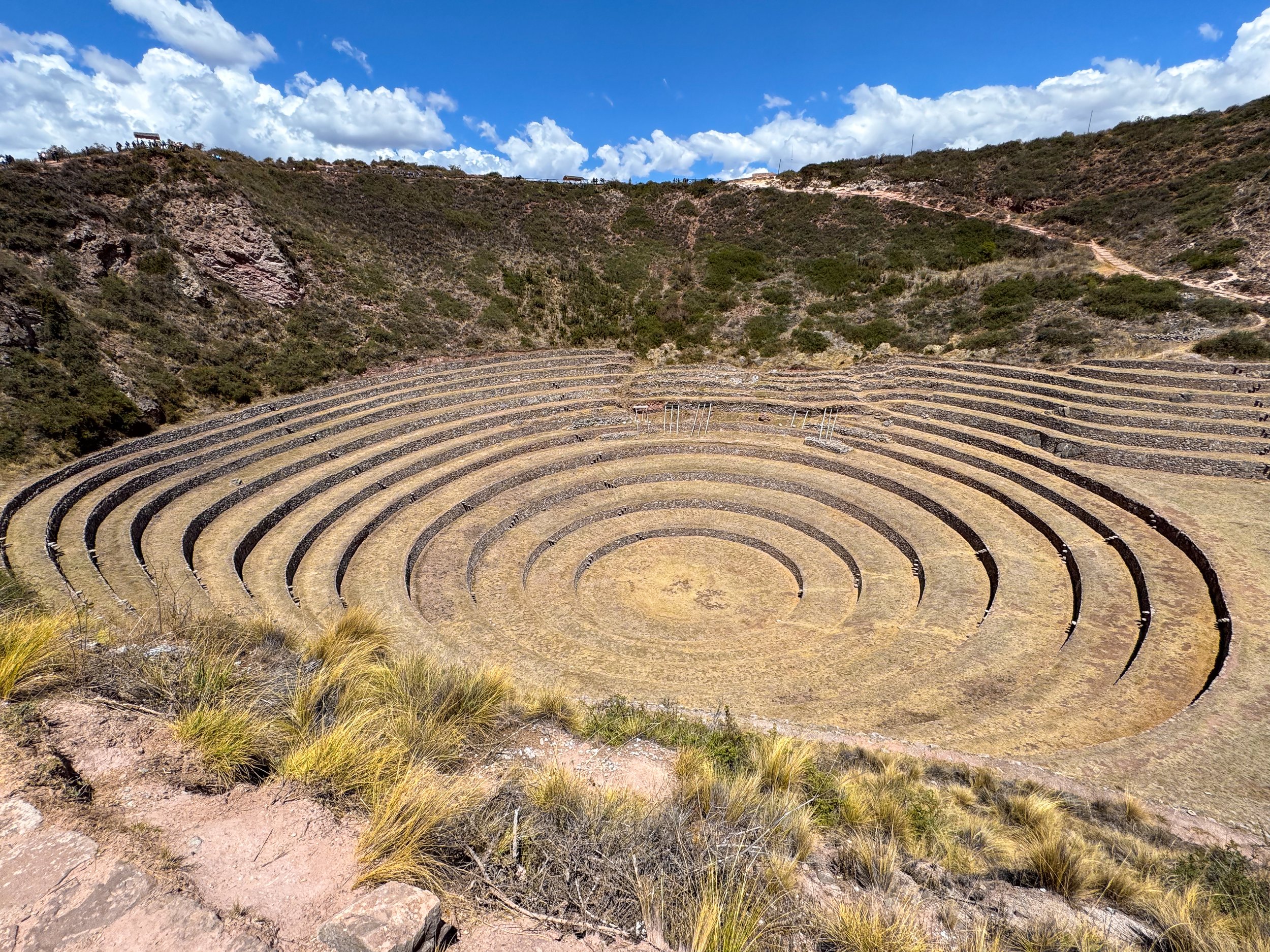
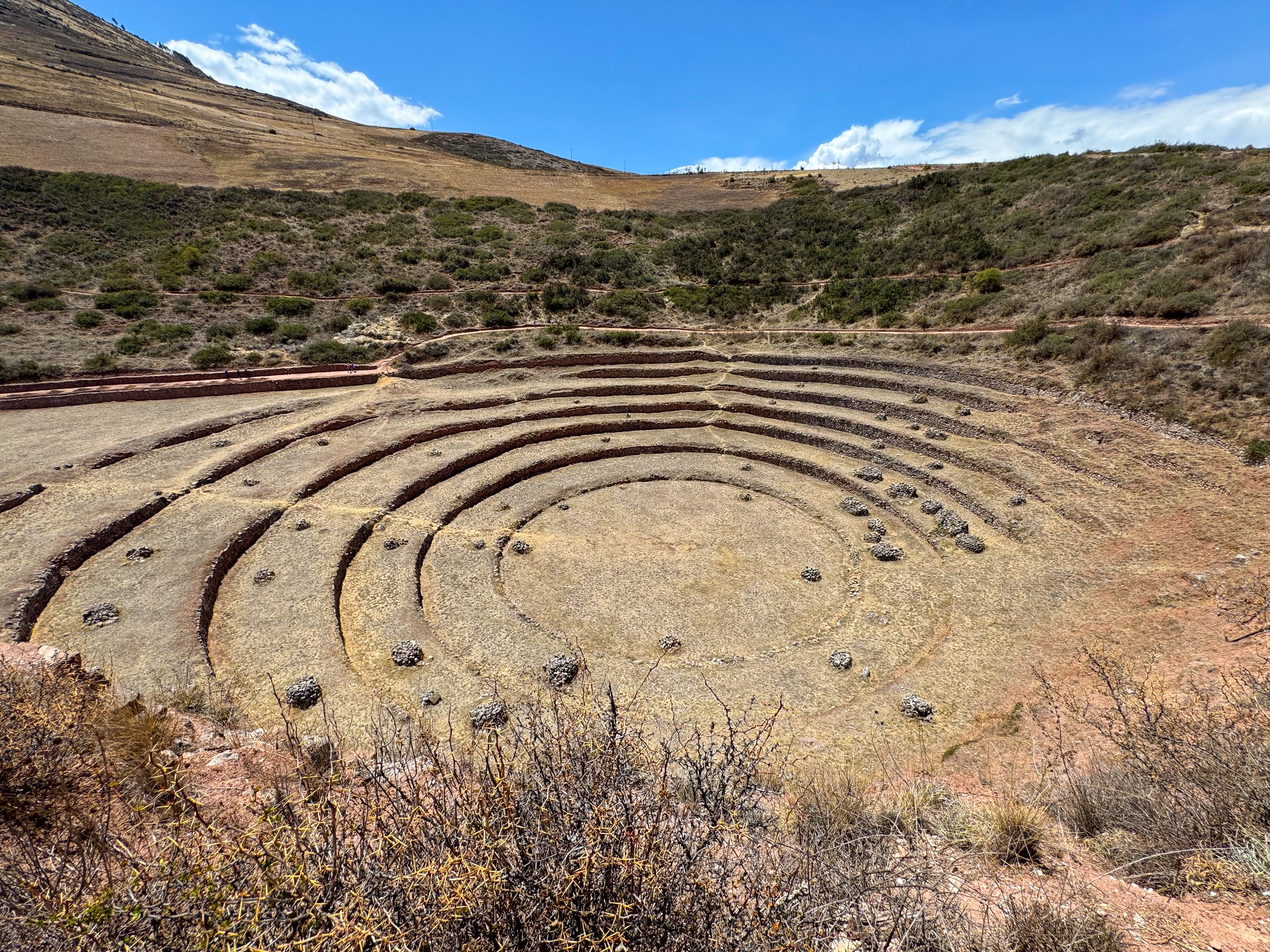
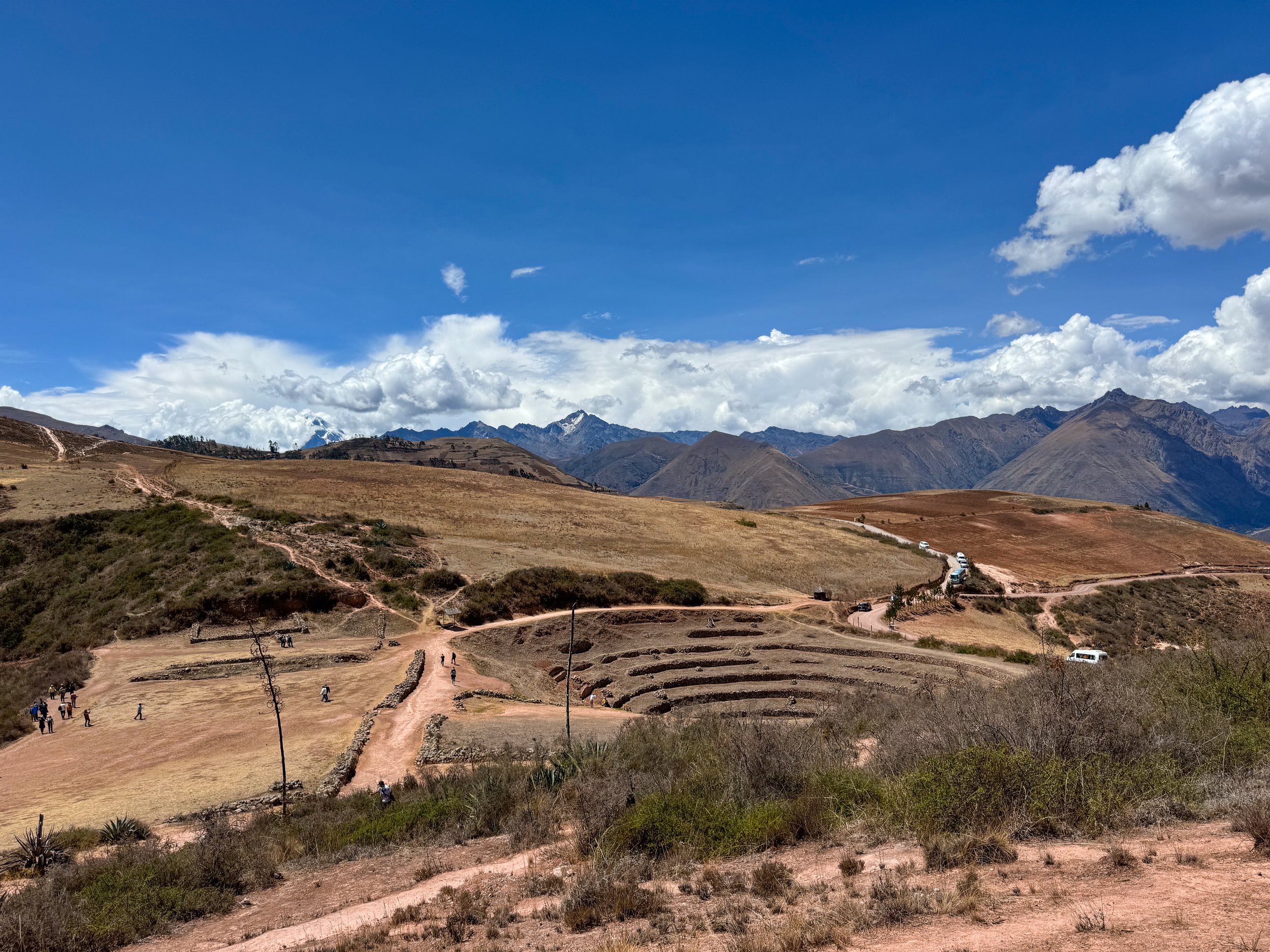
Moray Terraces
The Moray Terraces are series of circular and organic agricultural terraces built into a mountain valley by the Incans to test crop production. We walked around the terraces, following a series of trails that weave through them with views of the snow covered Andes Mountains in the background. The largest terrace is restored while the two small ones remain ruins.
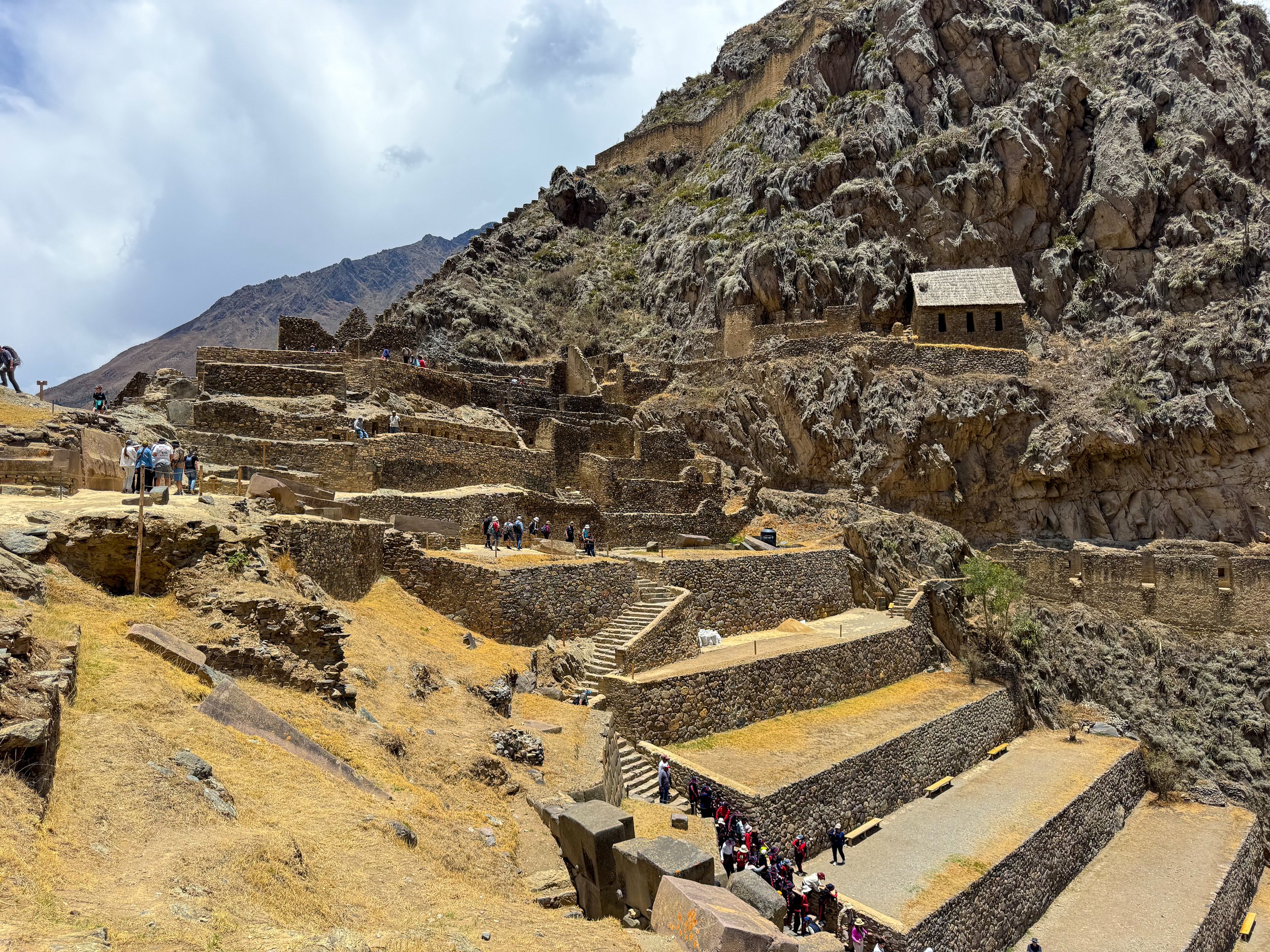
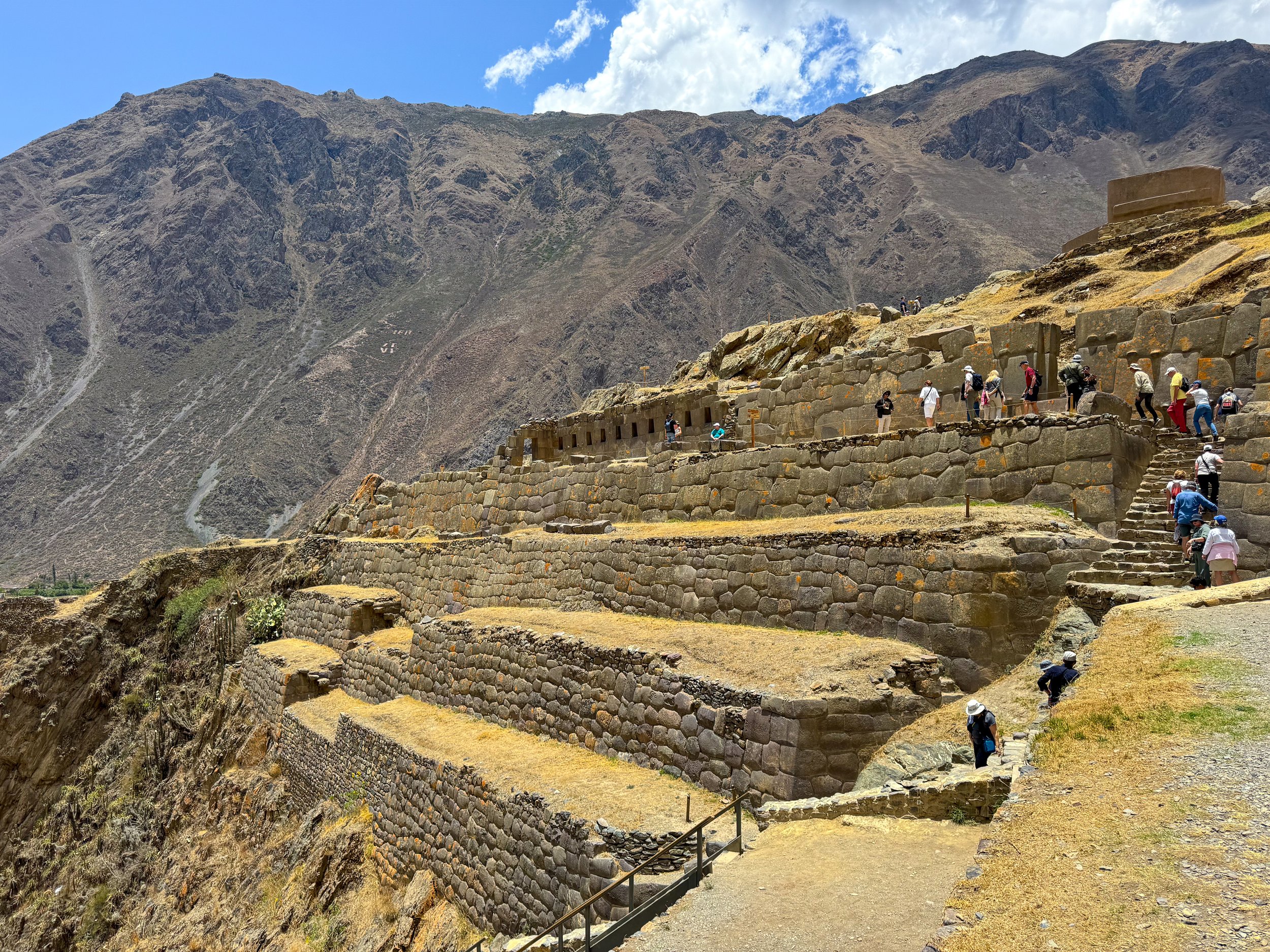
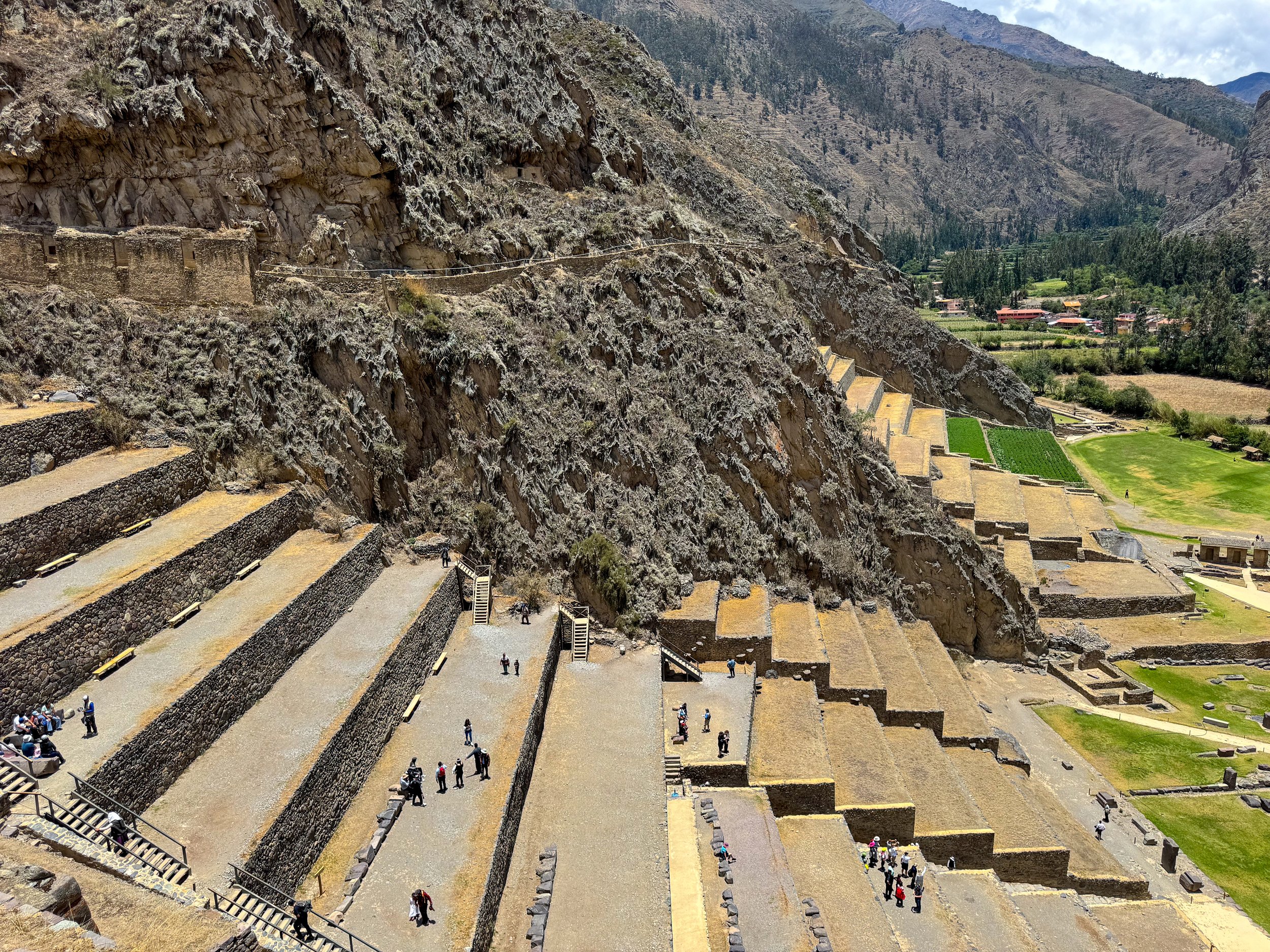
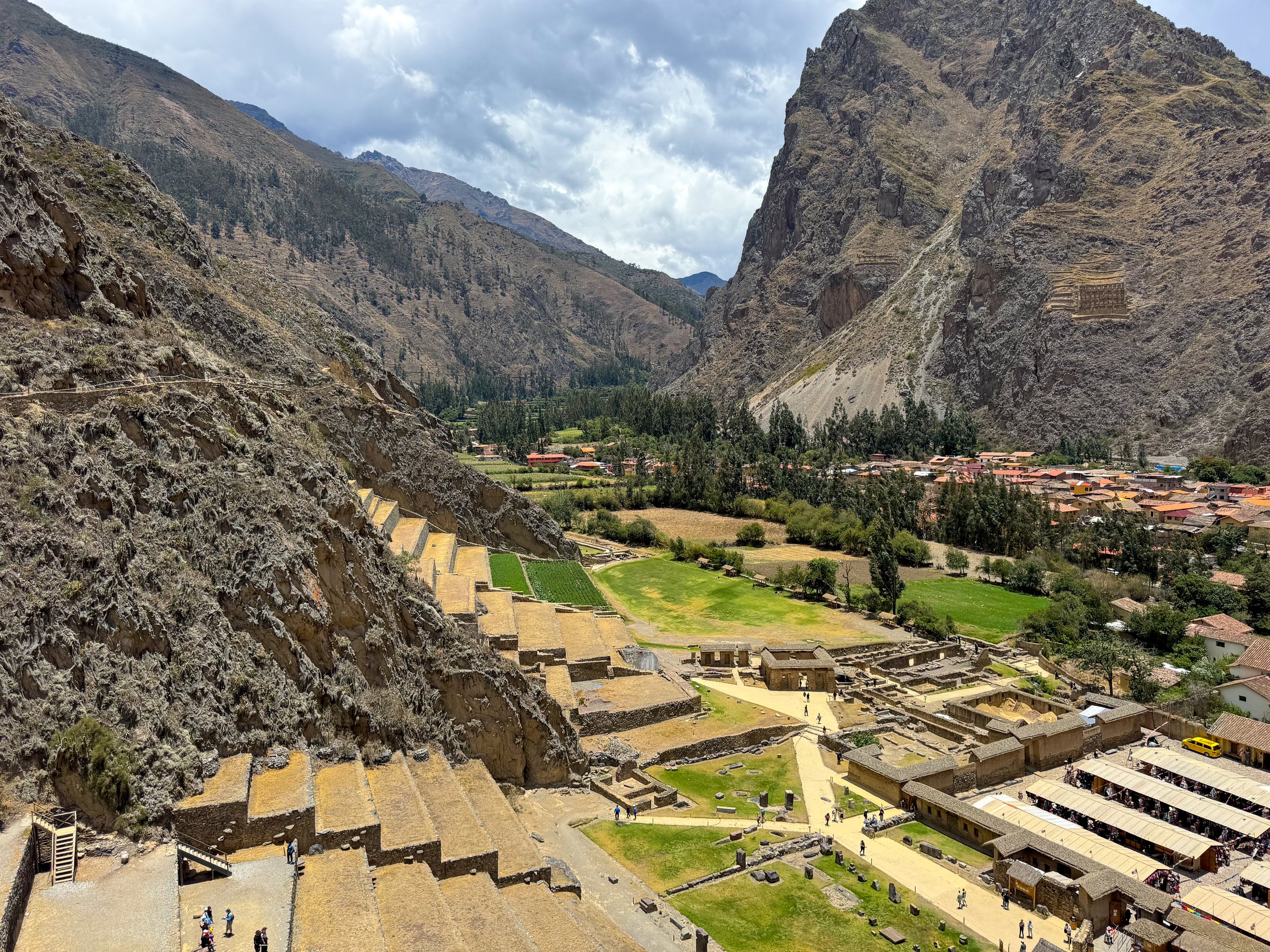
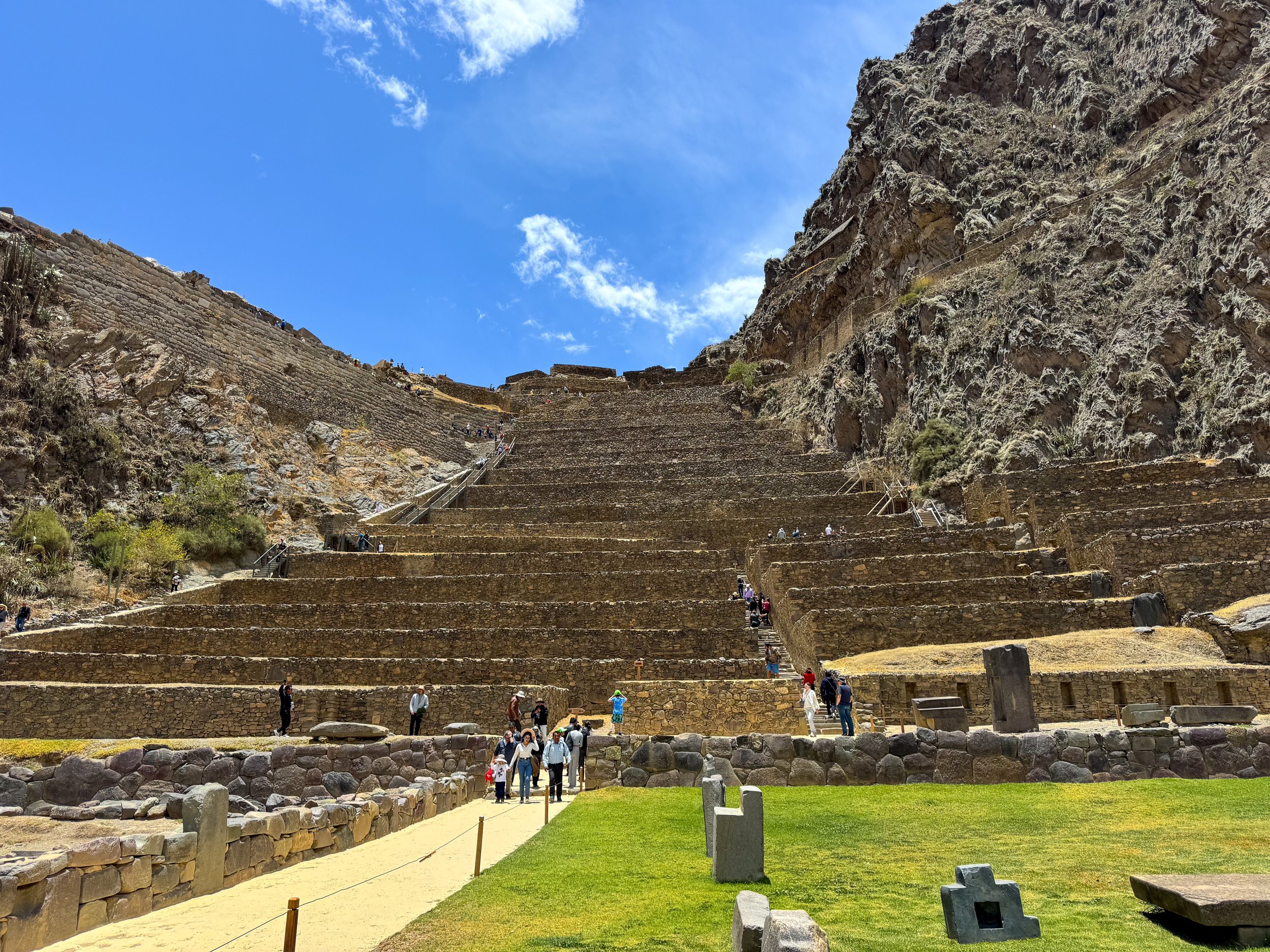

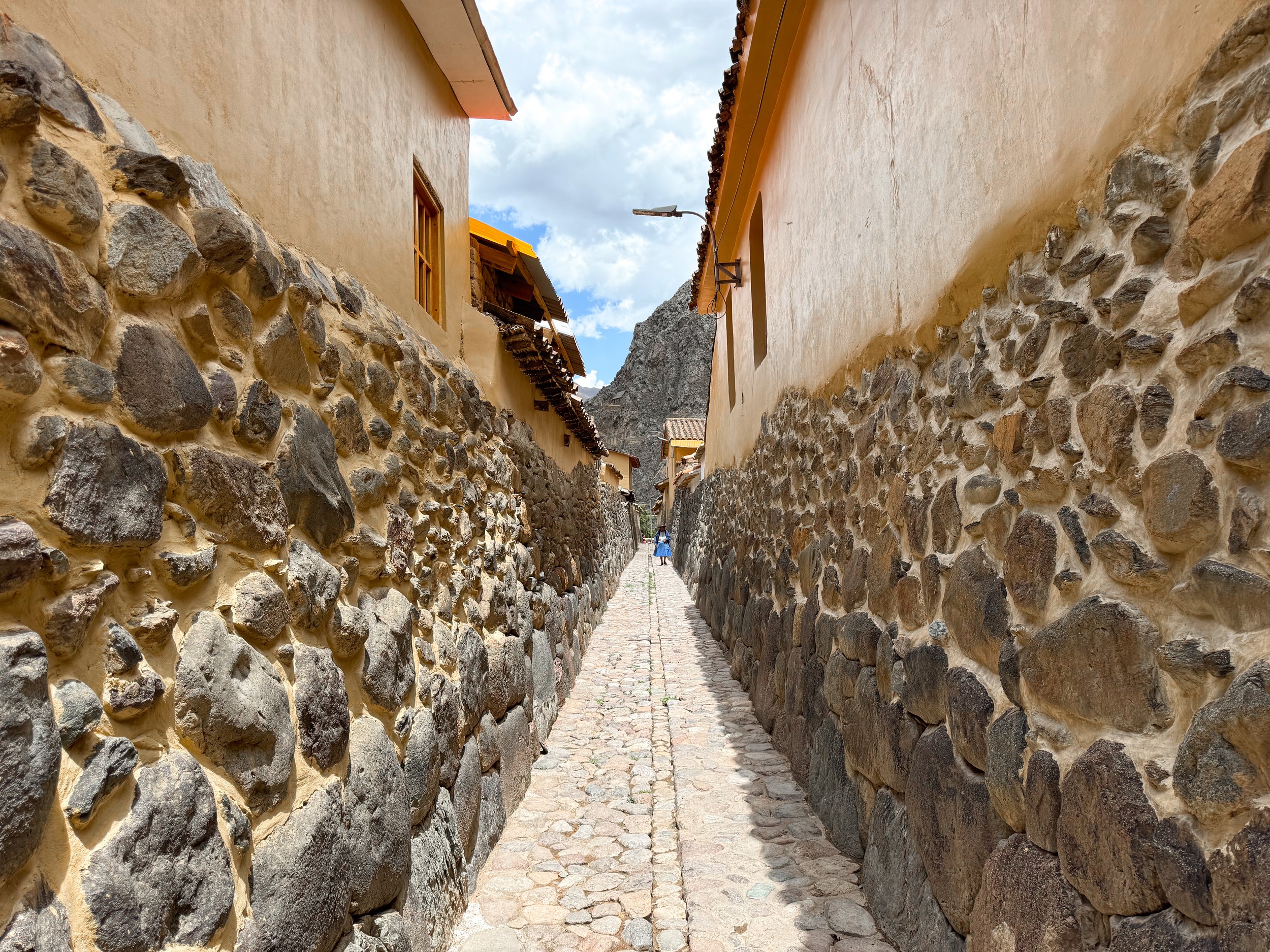
Ollantaytambo
Ollantaytambo is an Incan city built into the valley and up the mountainside with large agricultural terraces, grain storage buildings, a temple dedicated to the worship of the sun and winding hiking trails. We explored the ruins, hiking up the terraces to the Temple of the Sun and through the city. The stone roads, walls and irrigation canals from the Incan city remain and have been built upon by modern day Peruvians. The town has many hostels, restaurants, cafes and textile shops.
Ñaupa Iglesia
Ñaupa Iglesia is a hidden temple located above a terraced agricultural slope on the side of the mountain near Ollantaytambo. We hiked the terraces to a hidden temple with a niche and throne carved into the rock protruding from the entrance of a cave.
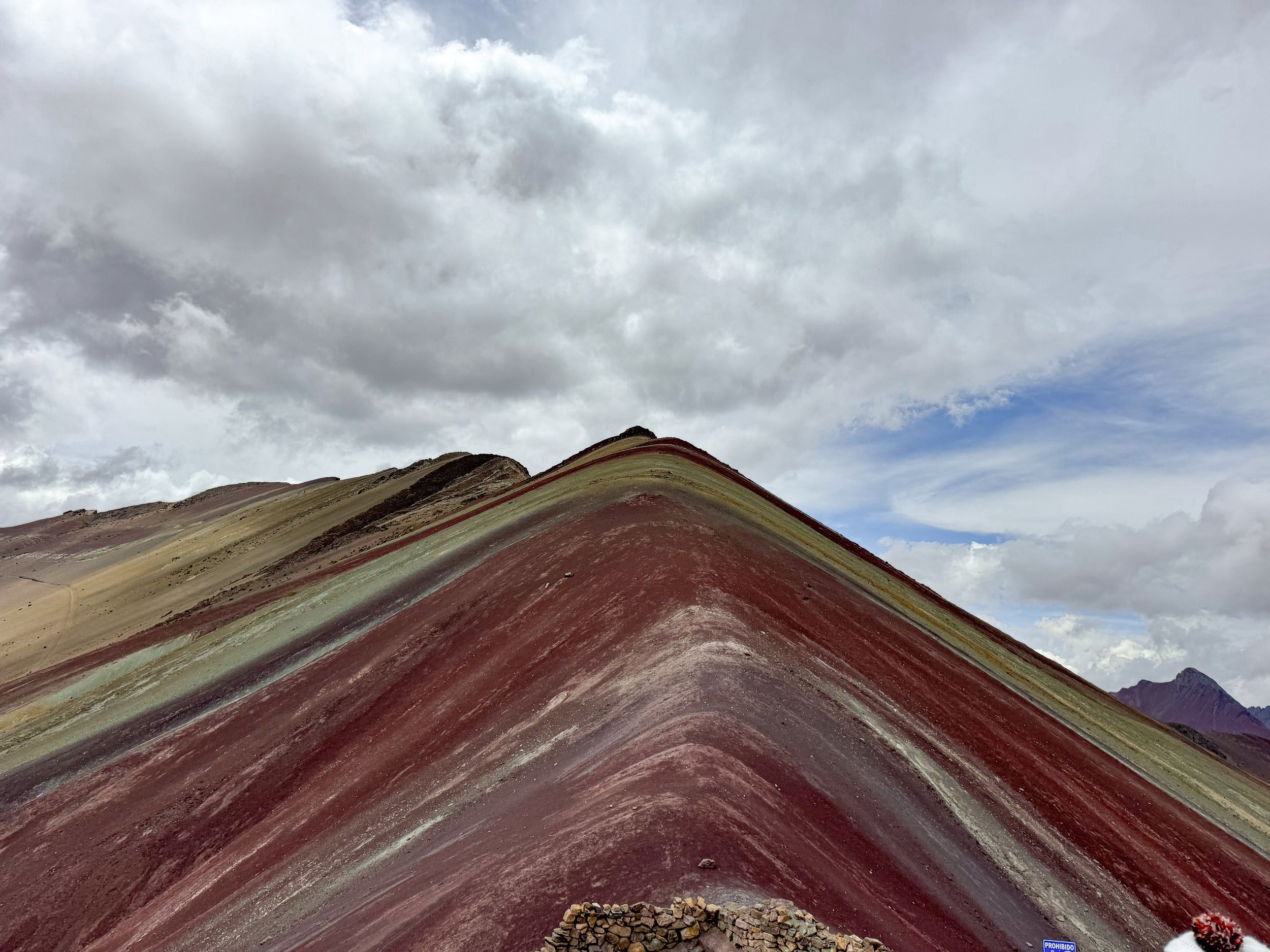
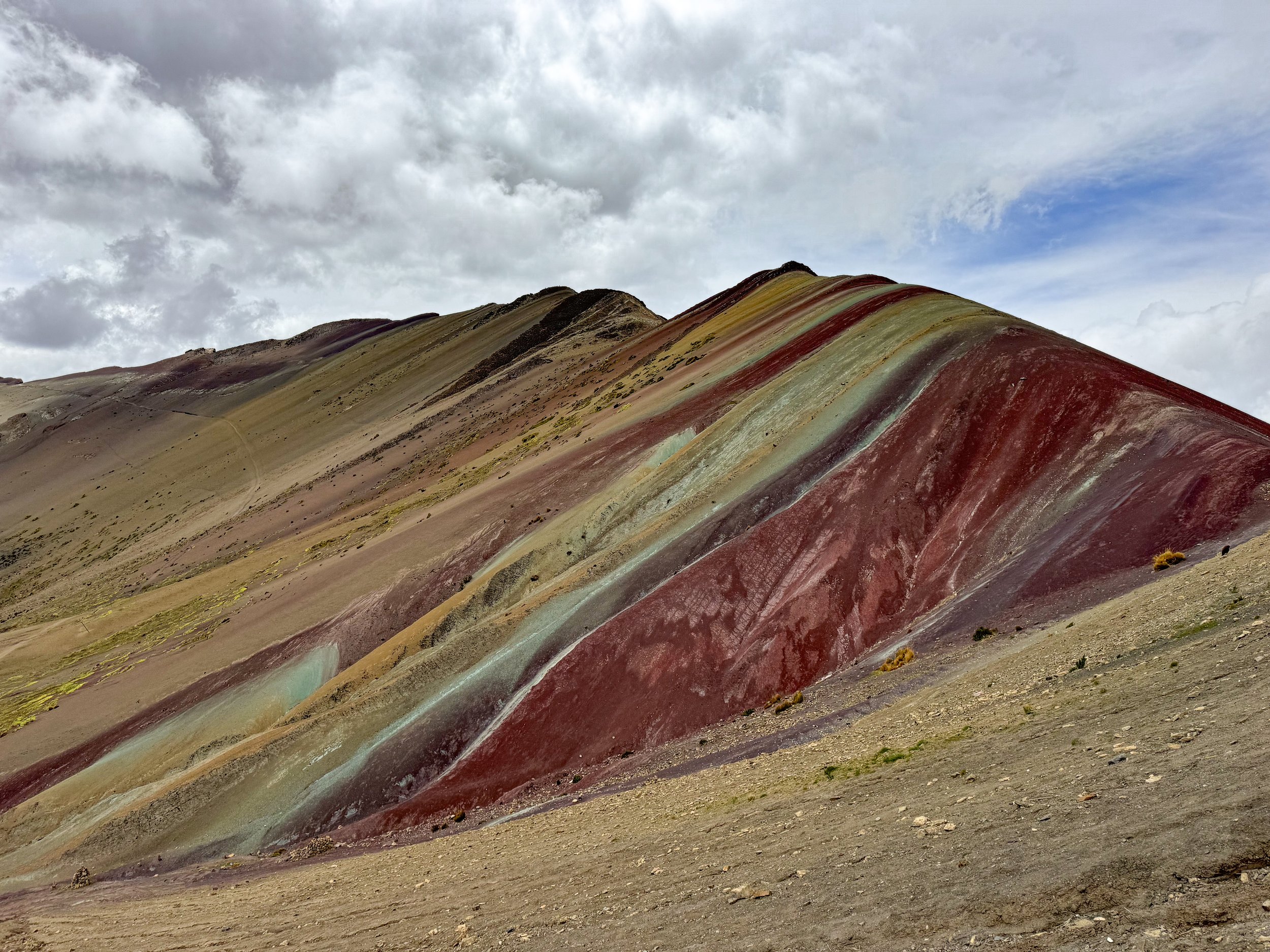
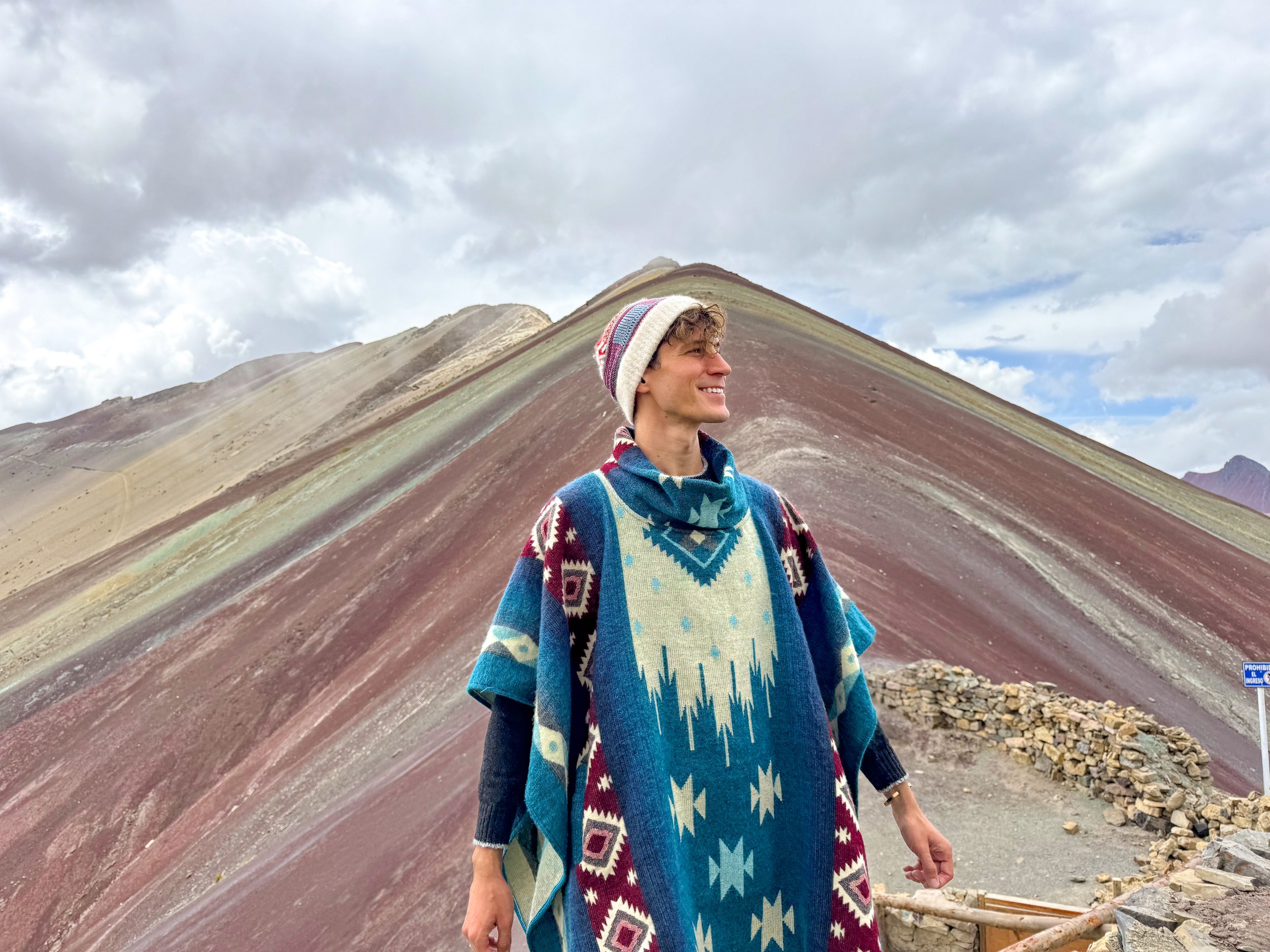
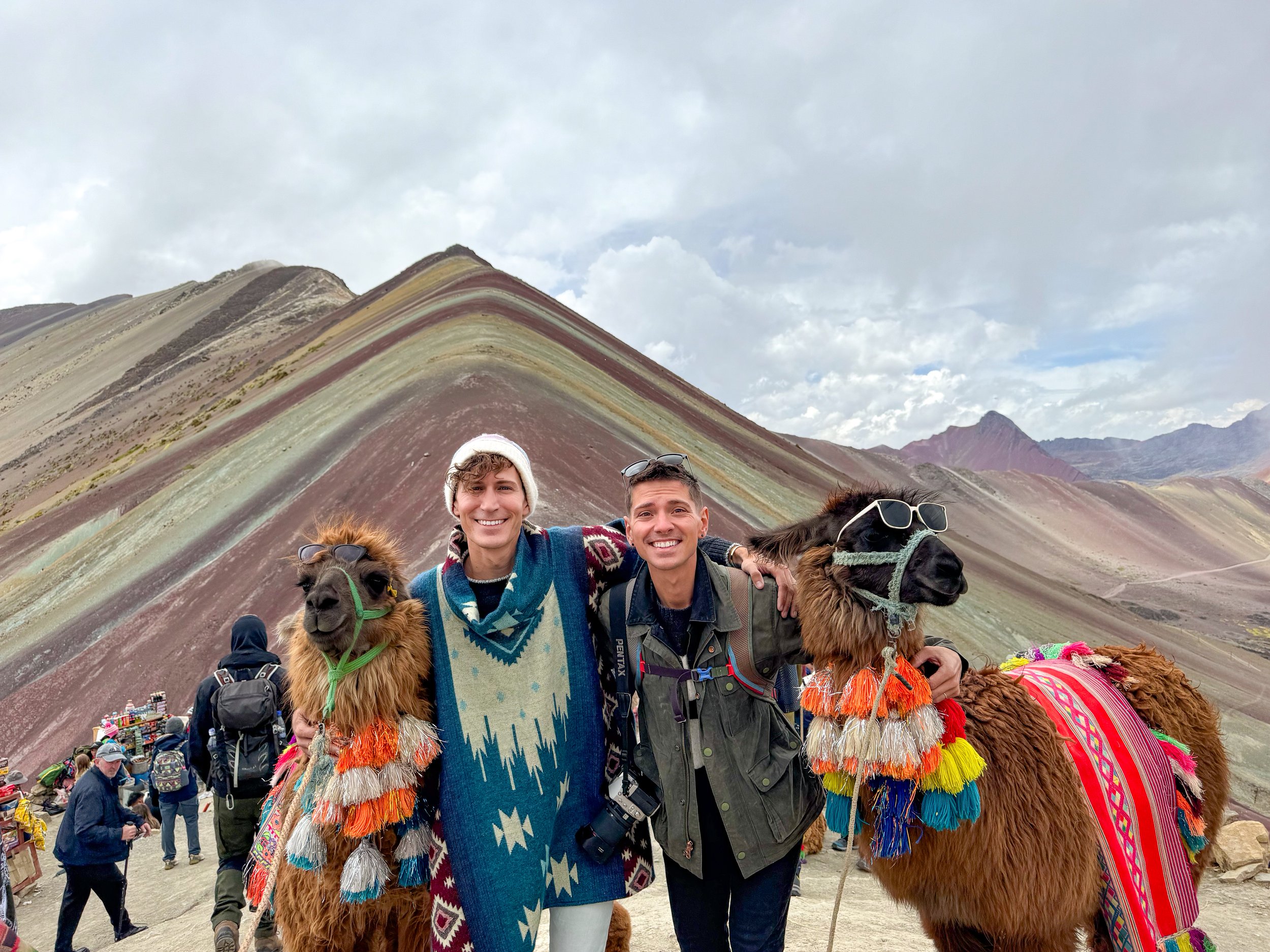
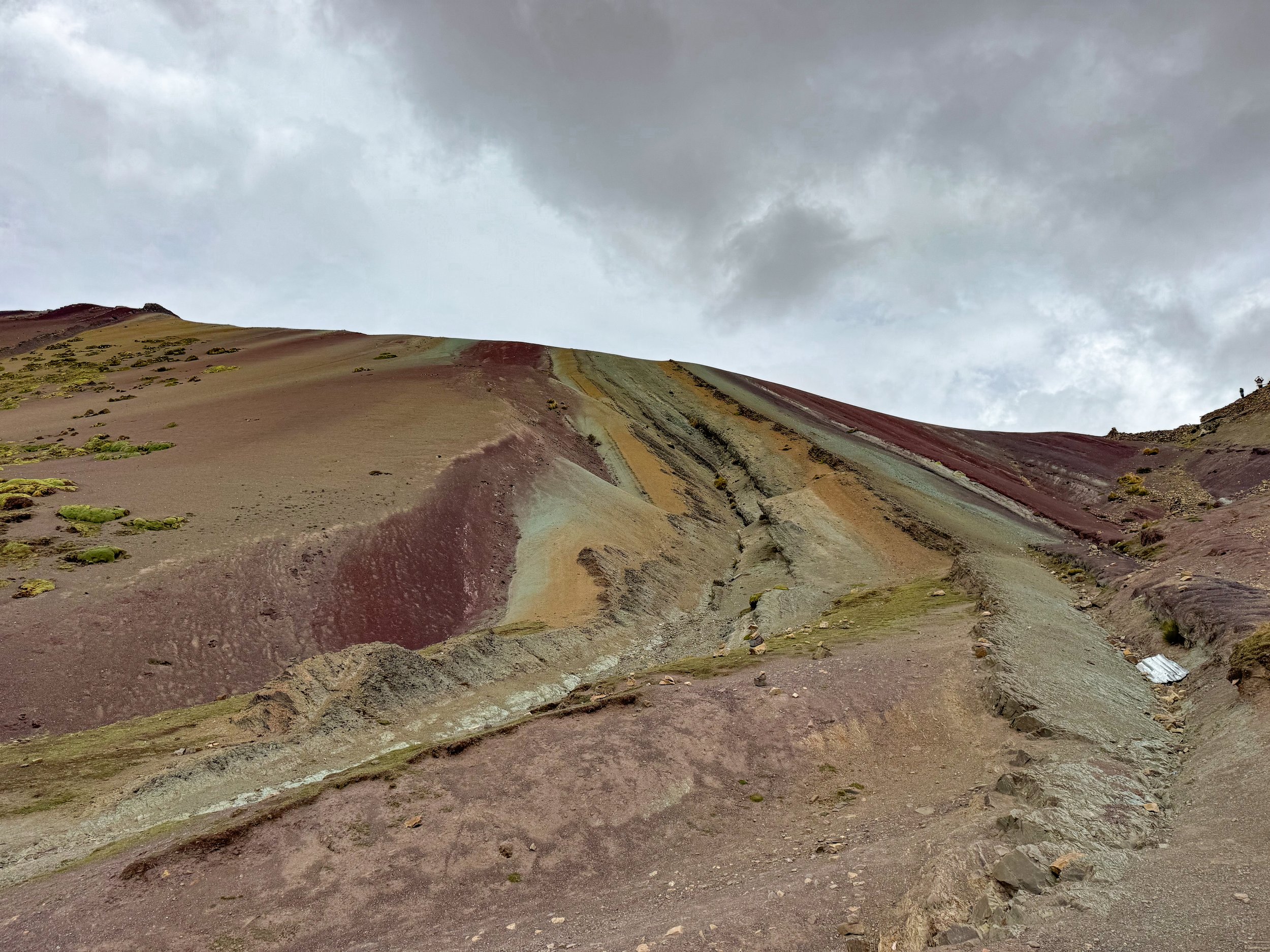
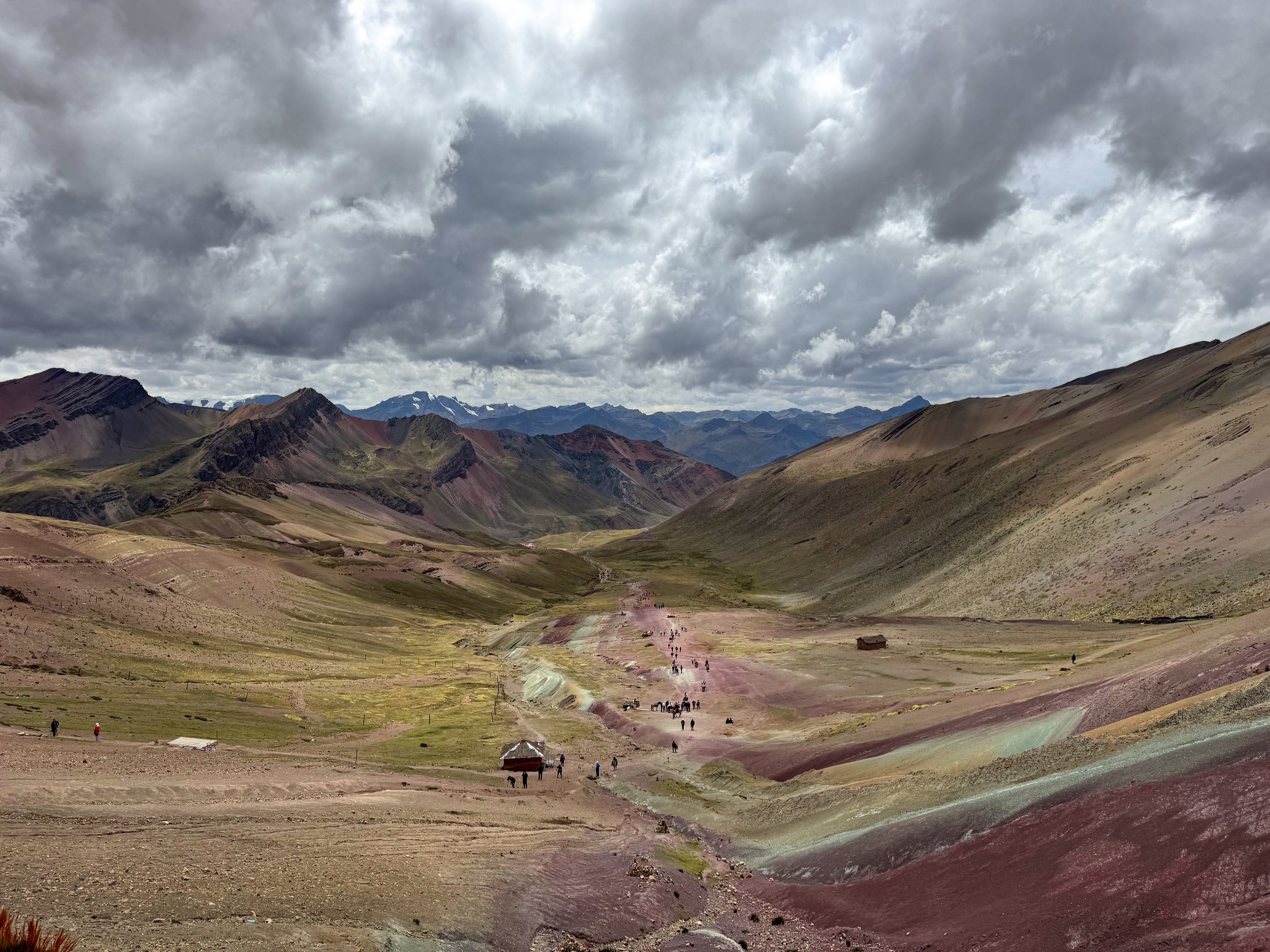
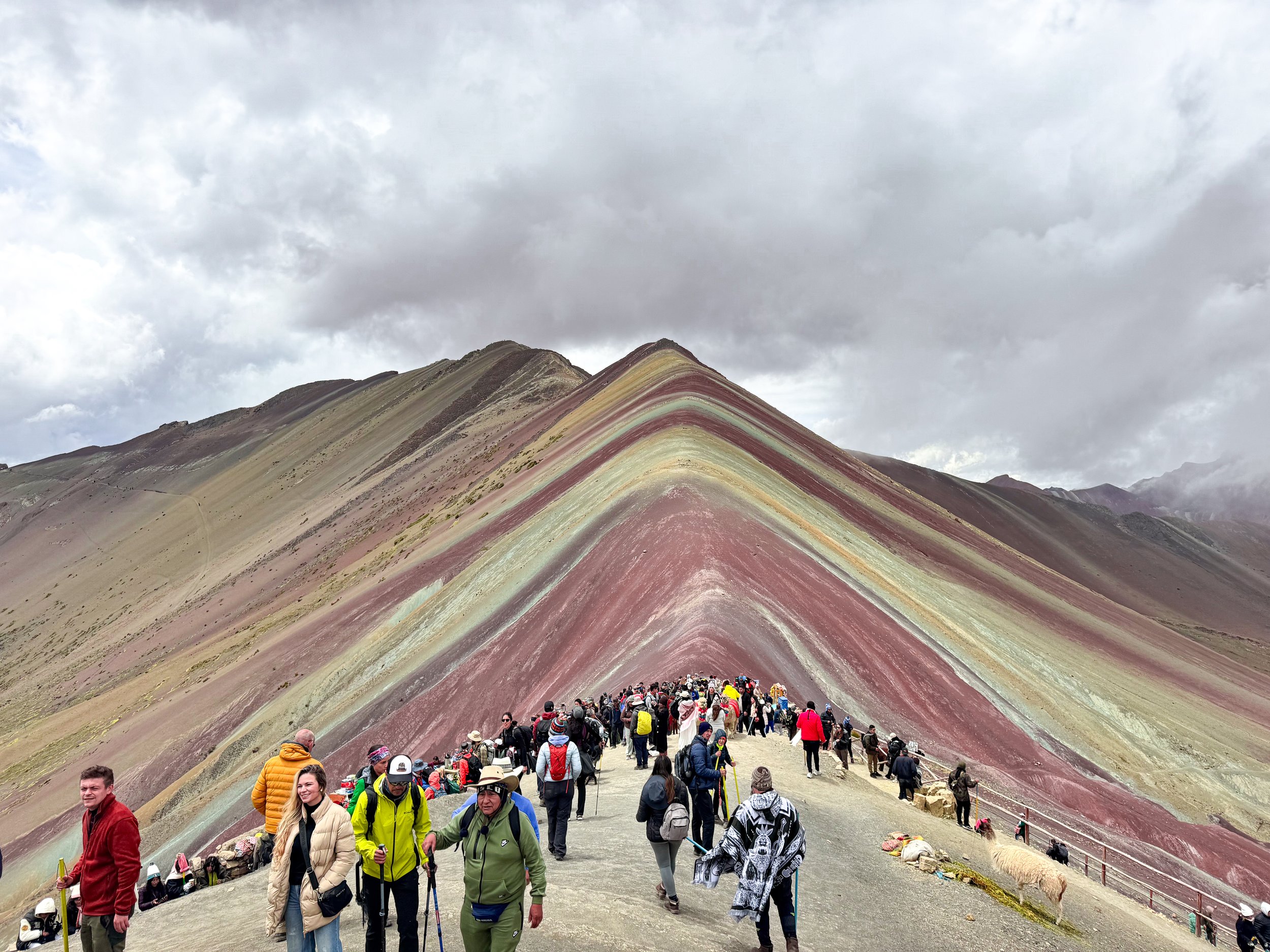
The Rainbow Mountain & Red Valley
The Rainbow Mountain & Red Valley are two recently discovered geological rock formations In the Peruvian Andes with vibrantly colored sediment.
The Rainbow Mountain
The Rainbow Mountain is a remote mountain in the Peruvian Andes with bands of oxidized minerals creating a rainbow effect in the soil. The view from the mountain’s summit is awe inspiring! At 5,036 meters (17,060 feet), the summit has views of the rainbow bands, moss covered valley and distant snow capped Andean mountains. It’s a popular destination with thousands of visitors per day coming to overlook the landscape. There are indigenous Peruvians with pairs of colorfully accessorized llamas posing for photos for a small donation.
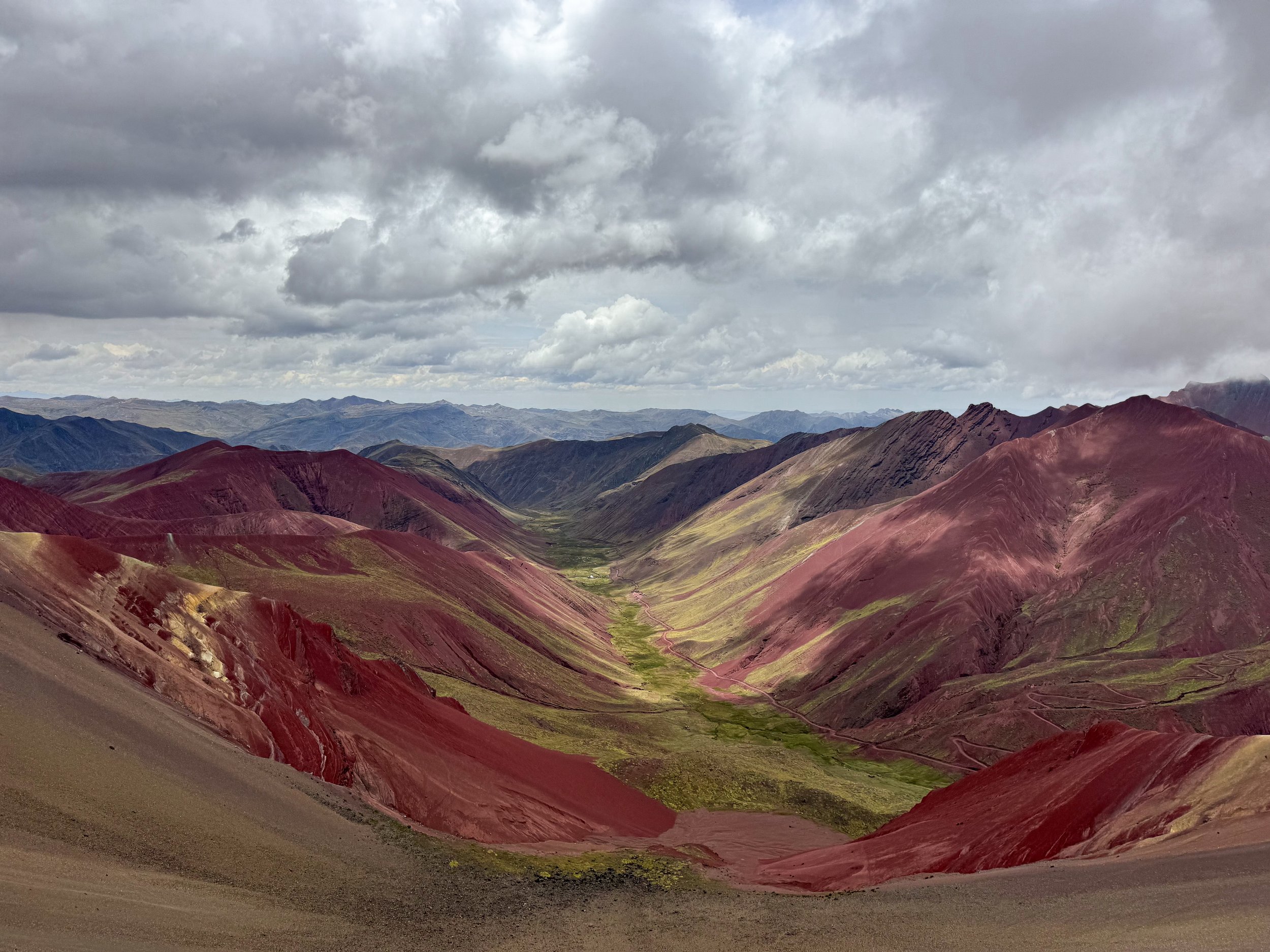
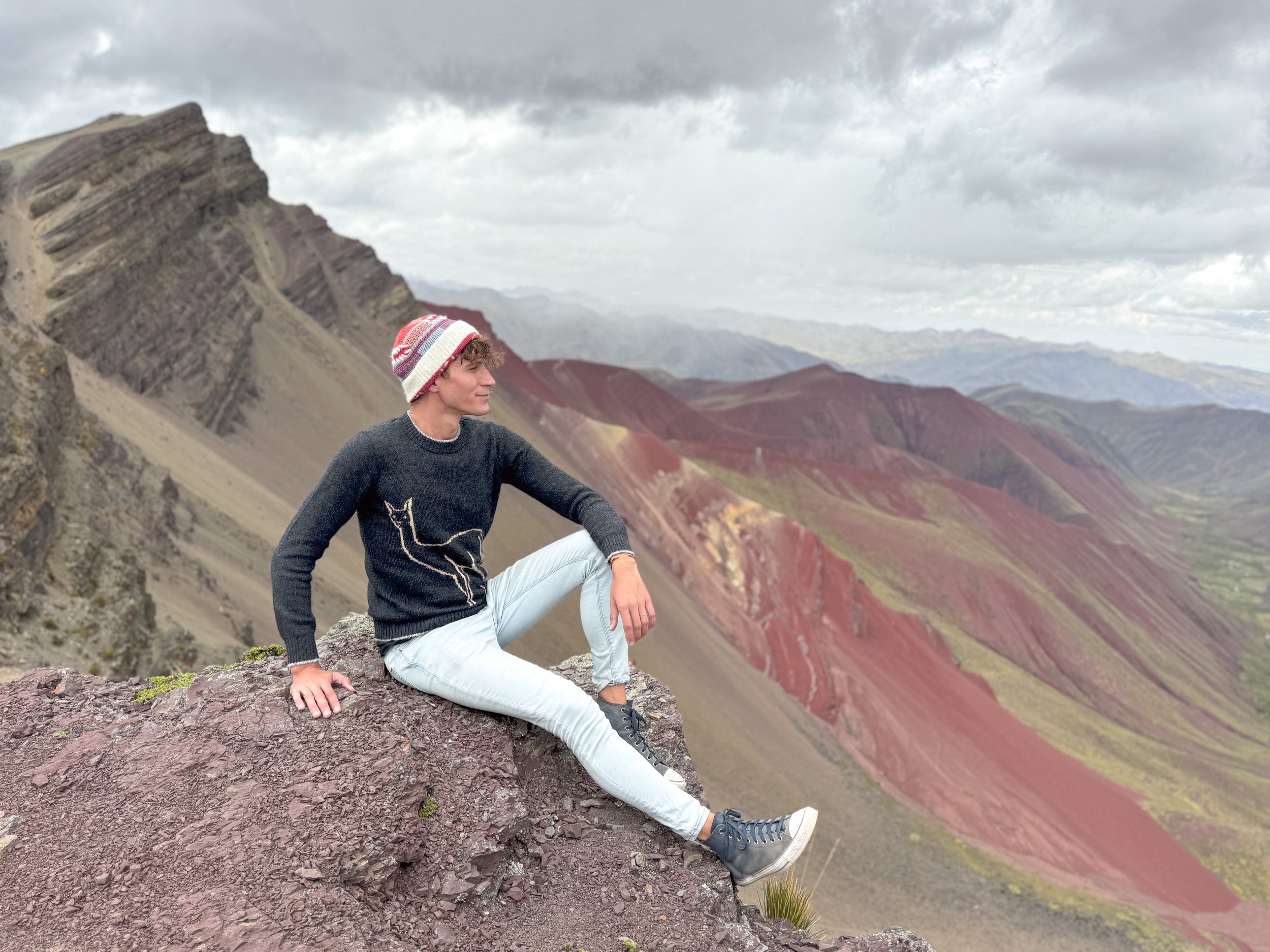
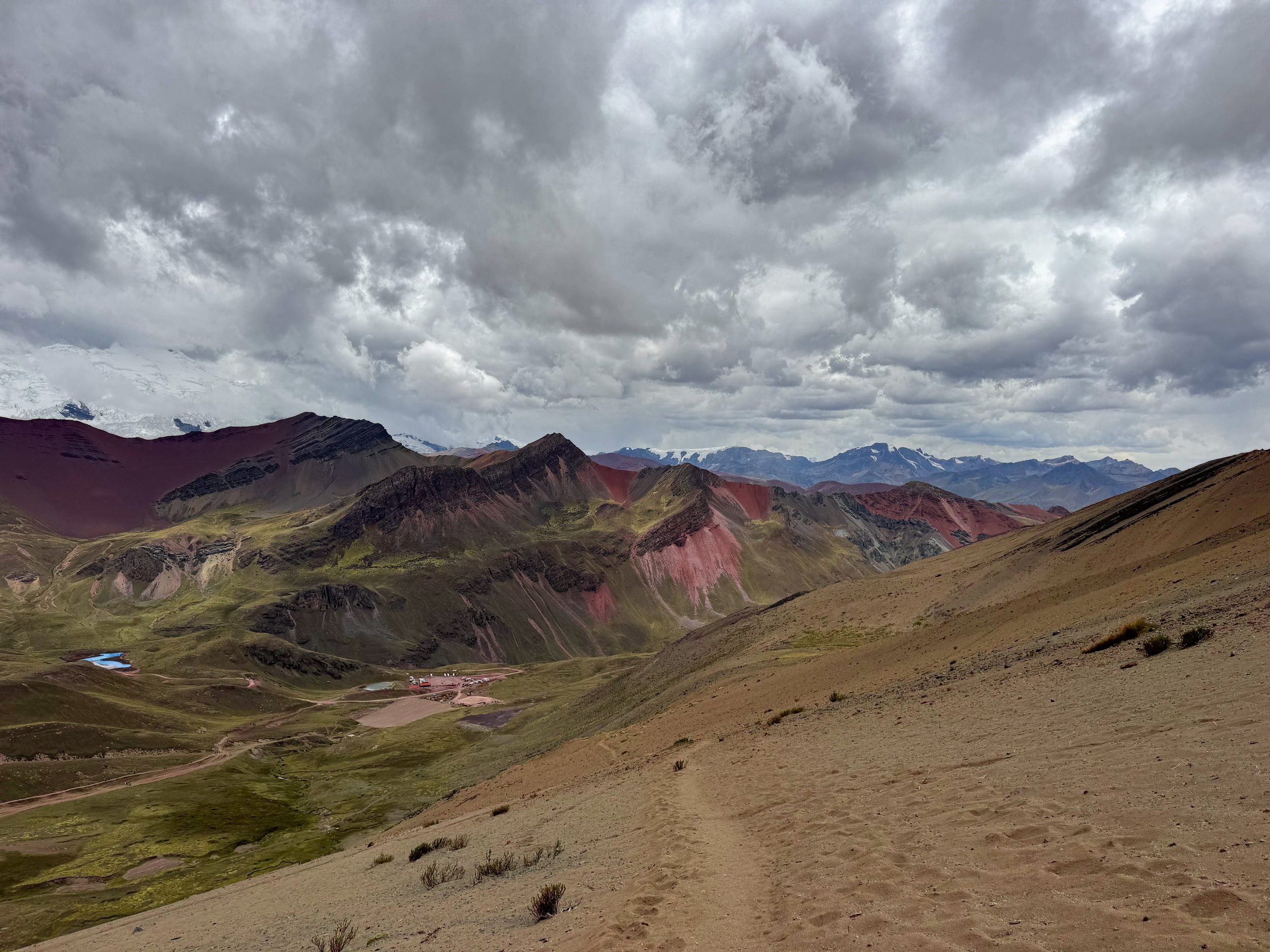
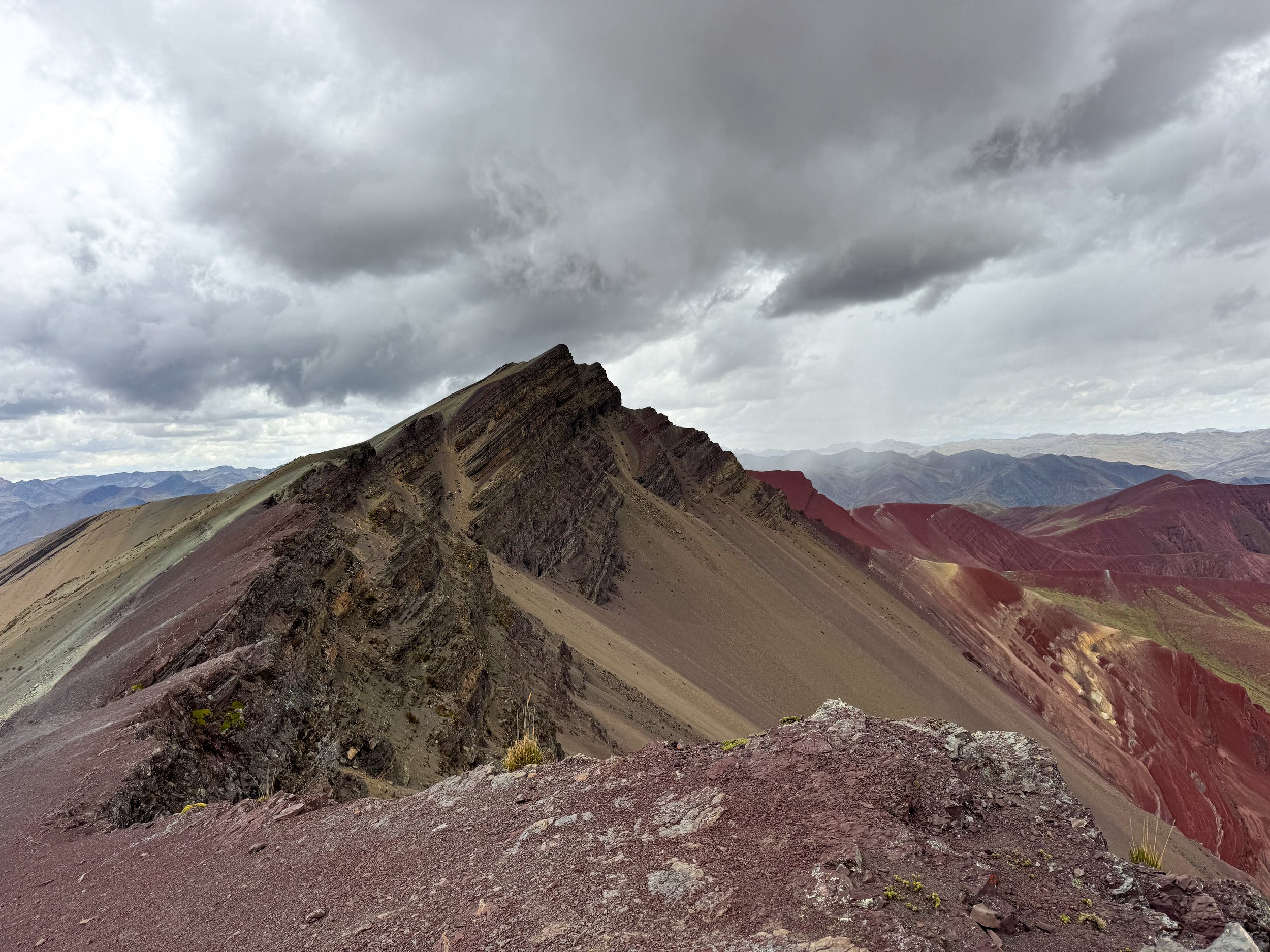
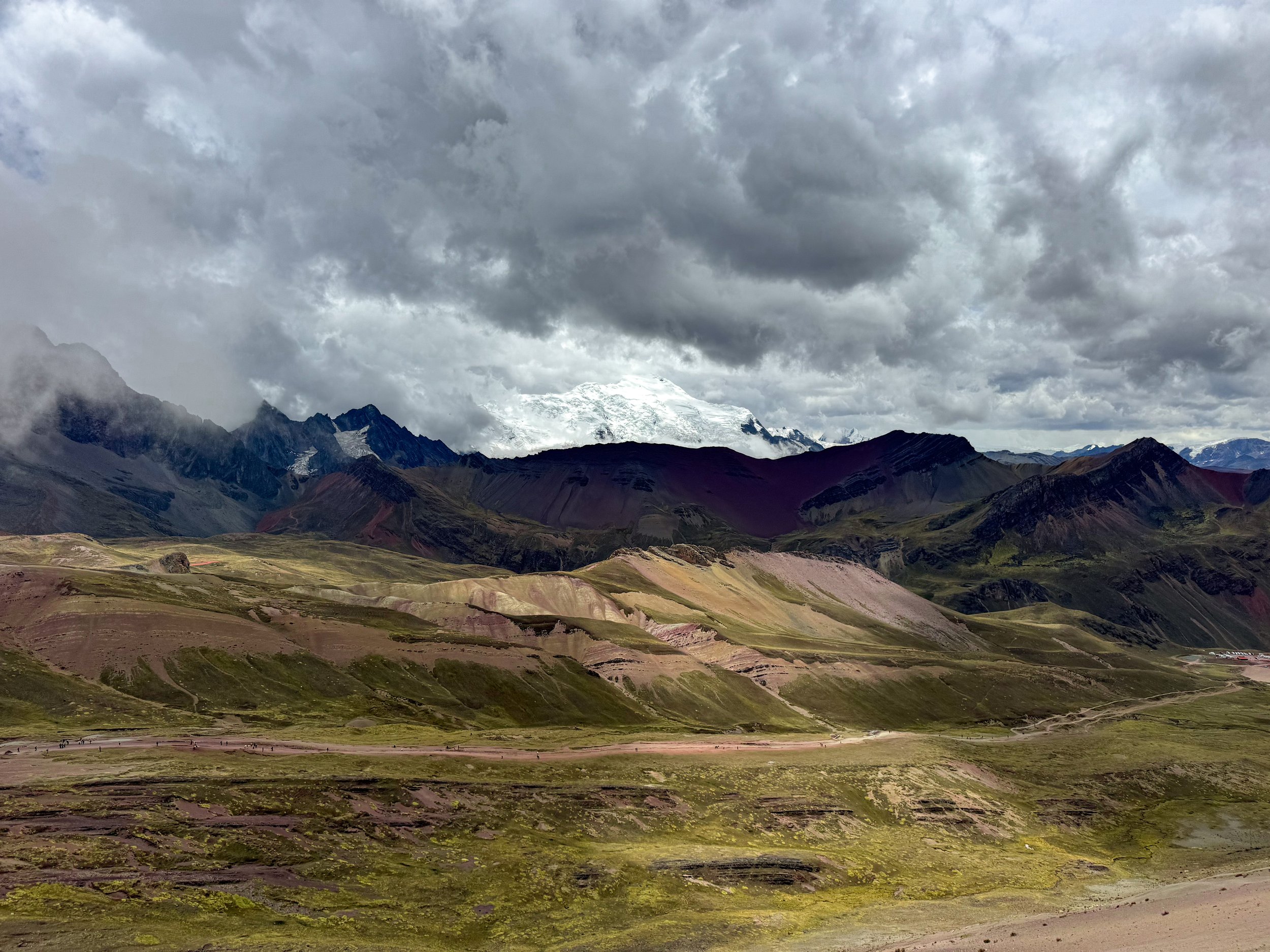
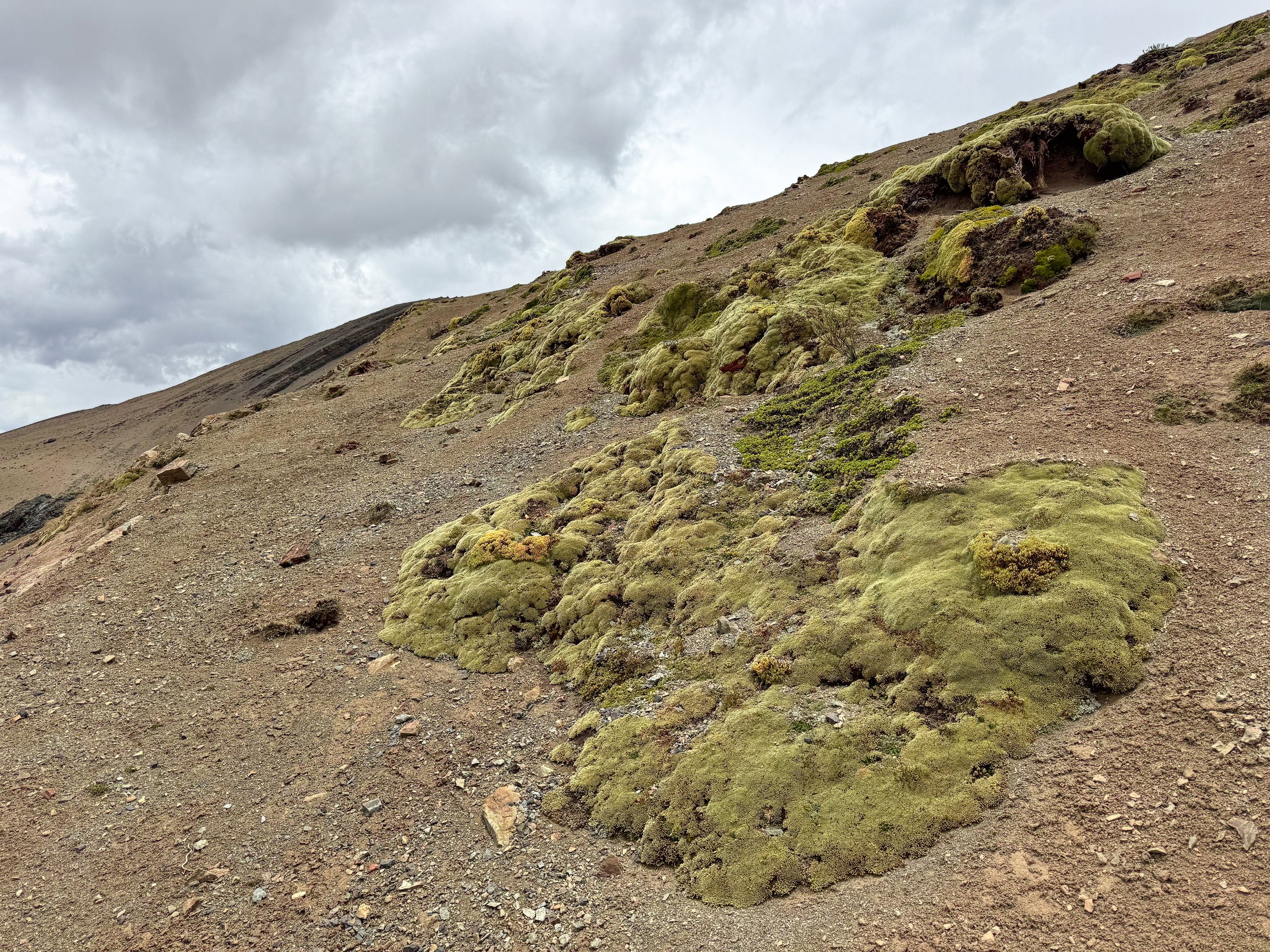
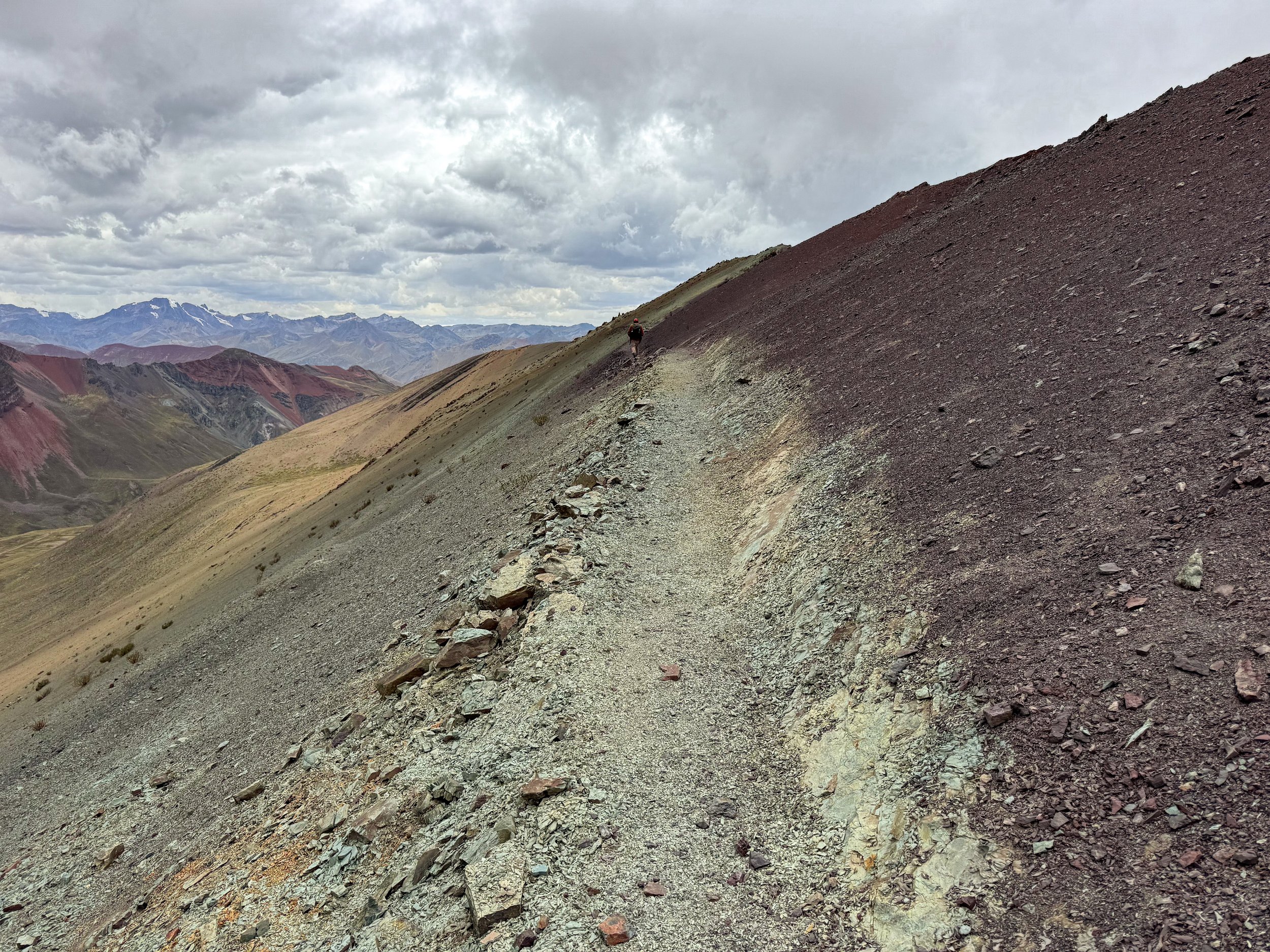
The Red Valley
The Red Valley is a valley with blood red soil and green moss spanning between two mountains on the other side of the rainbow mountain. The panoramic view from the crest overlooking the valley is a surreal experience that left us feeling tiny compared to the surrounding world. Along the trail, we passed colorful stones, vibrant green moss and observed magnificent views of the mountains and glaciers. It is far less touristy with less than a dozen visitors.
Getting Here: We visited both the Rainbow Mountain and Red Valley on a small group guided tour from Cusco. It included transportation, breakfast and lunch. Starting at 4:30am, we drove from Cusco high into the Andes along narrow switchback roads, past terraced fields and countless llamas to reach the trail head. It took a 45 minute to hike uphill to reach the Rainbow Mountain and 25 minutes further to reach the Red Valley. We felt good enough to hike the trail but for those with altitude sickness, there are horses, motorbikes and quads for hire. Book here!
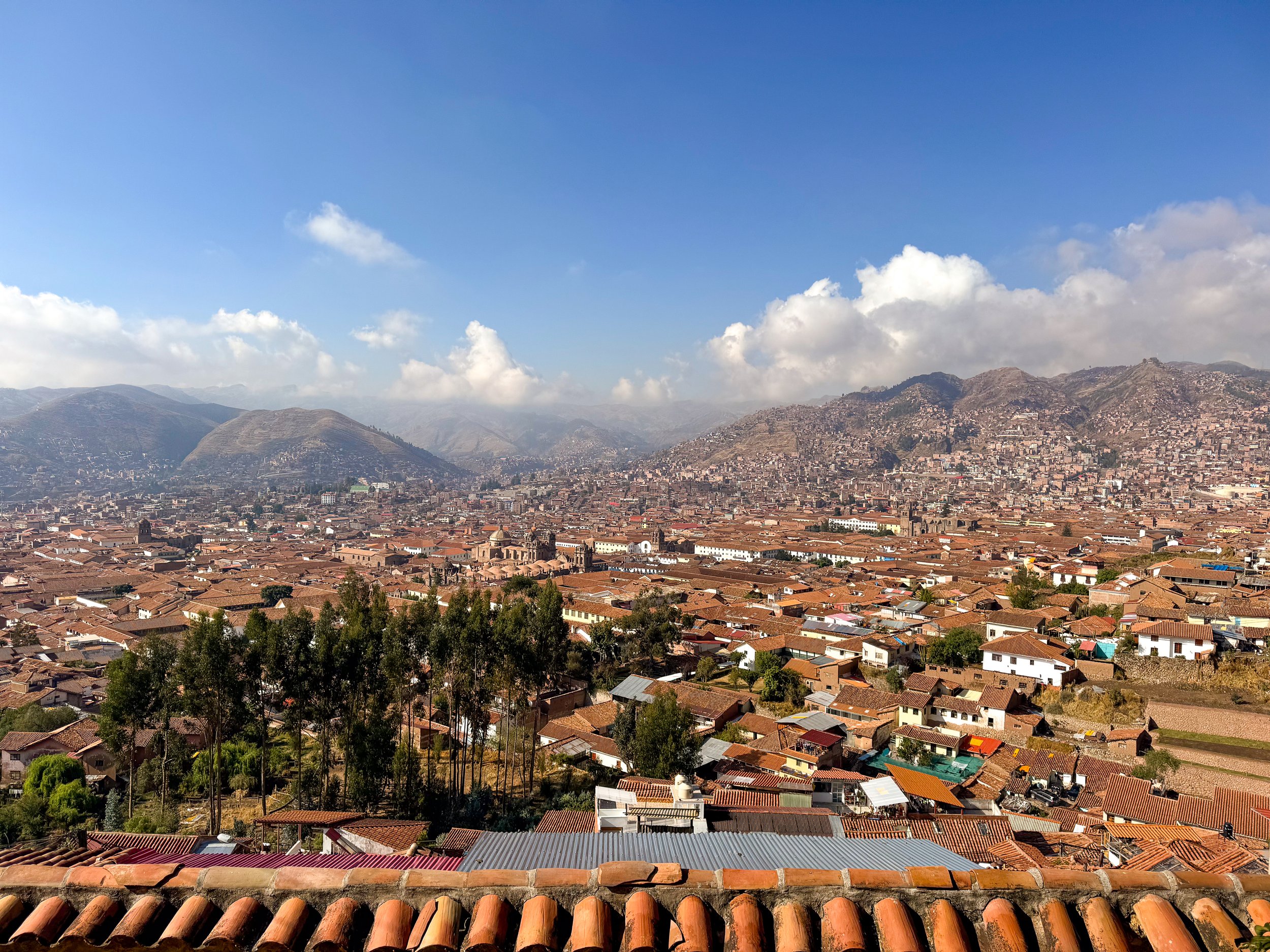
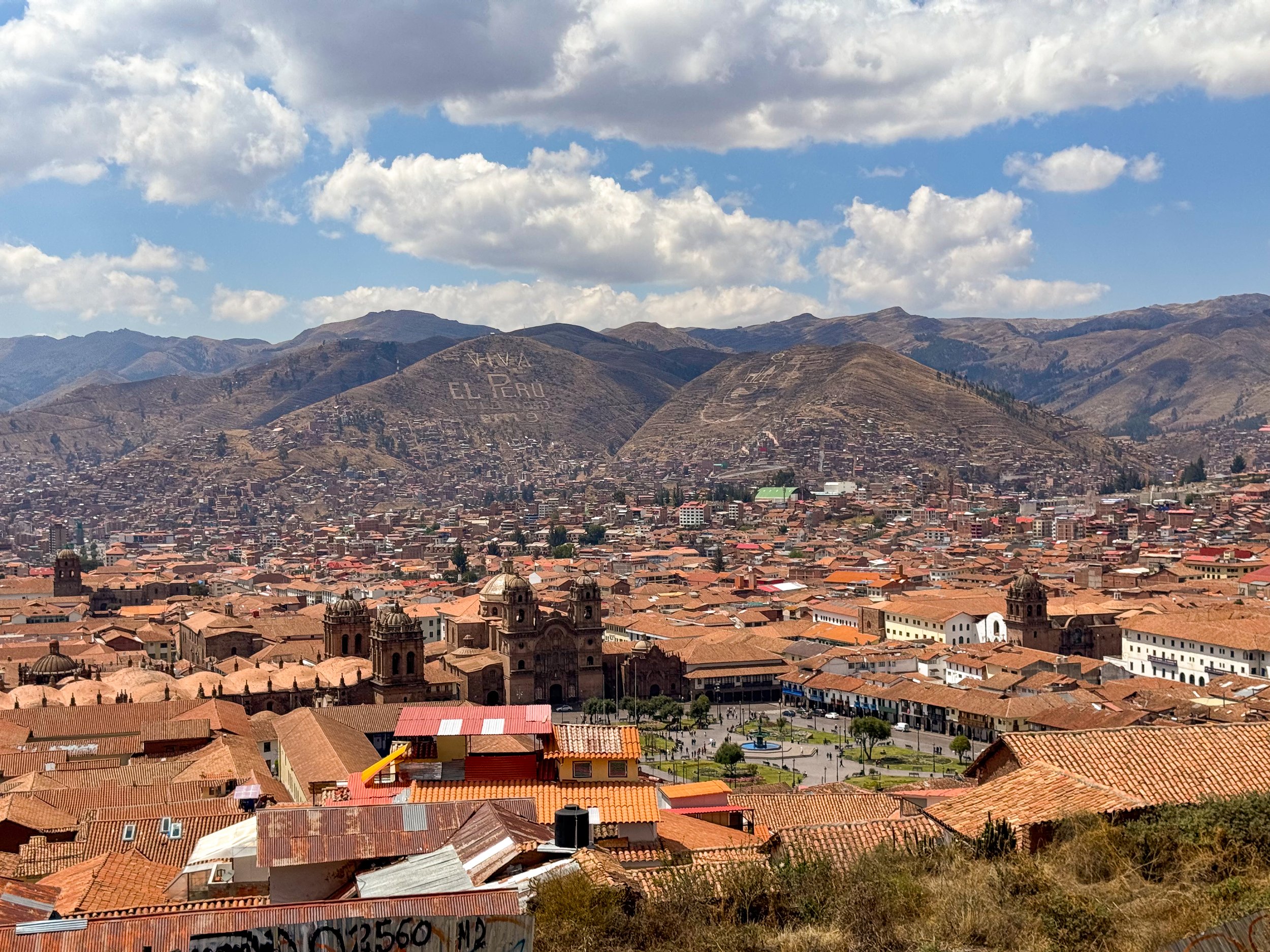
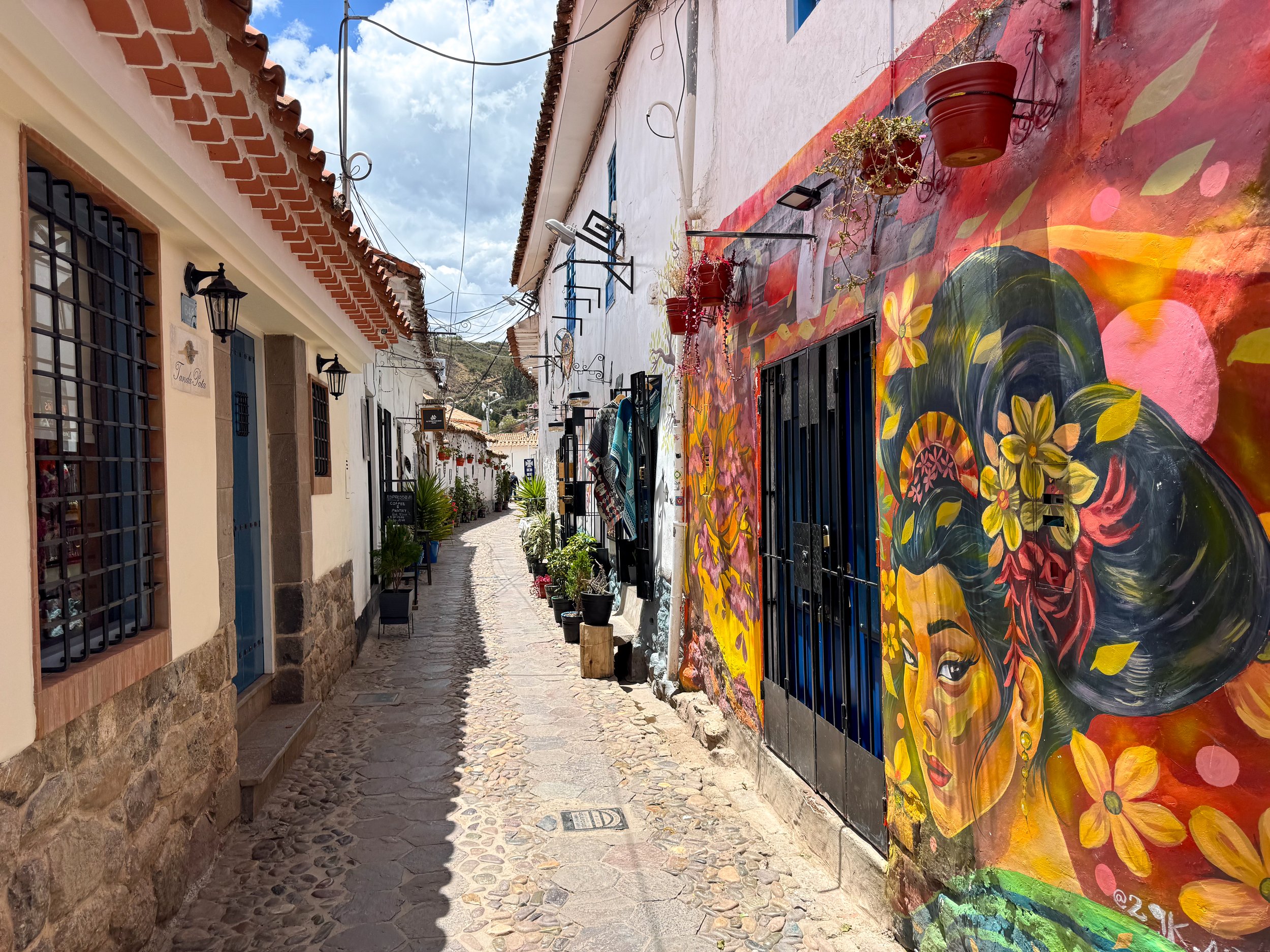
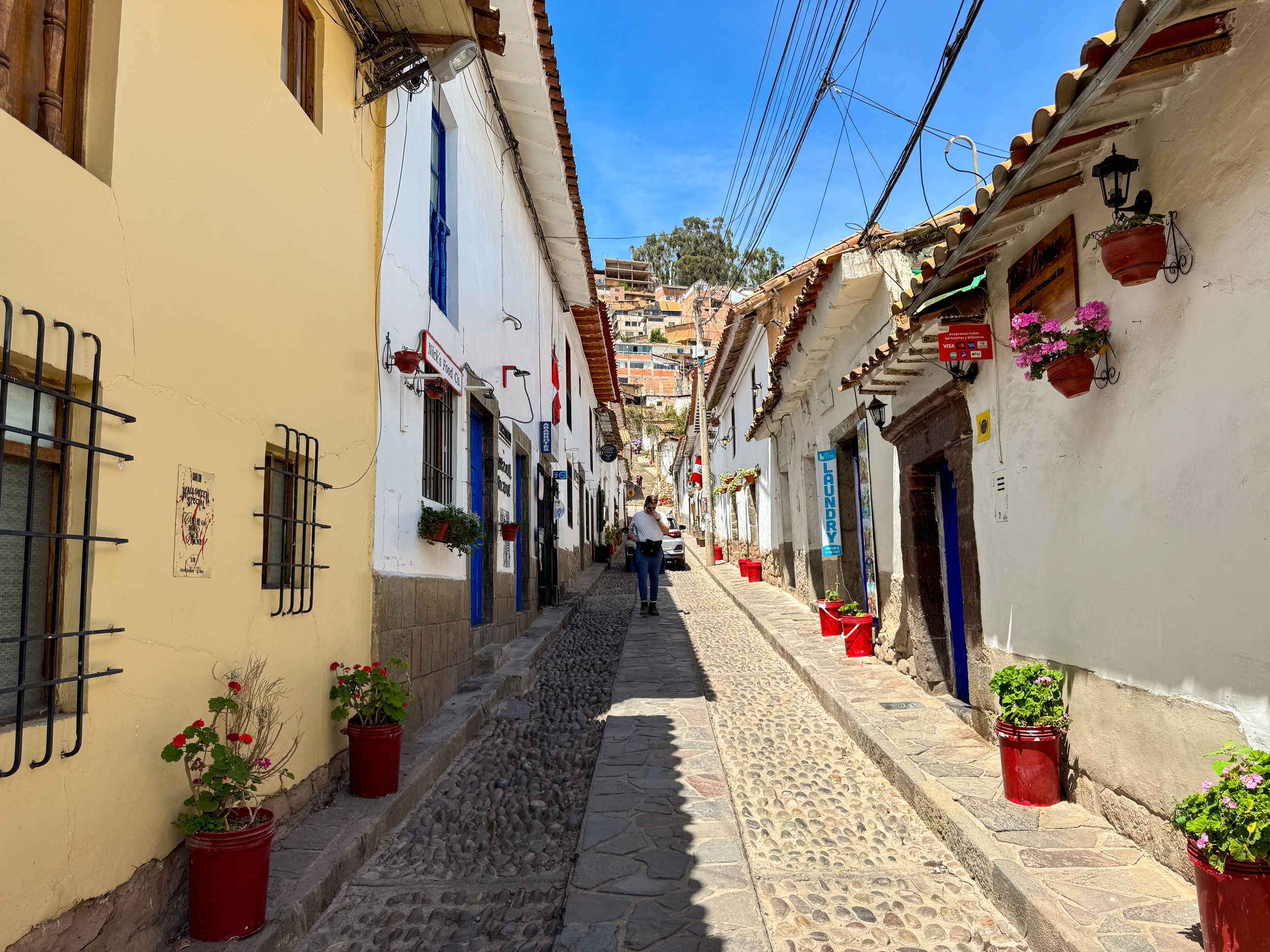
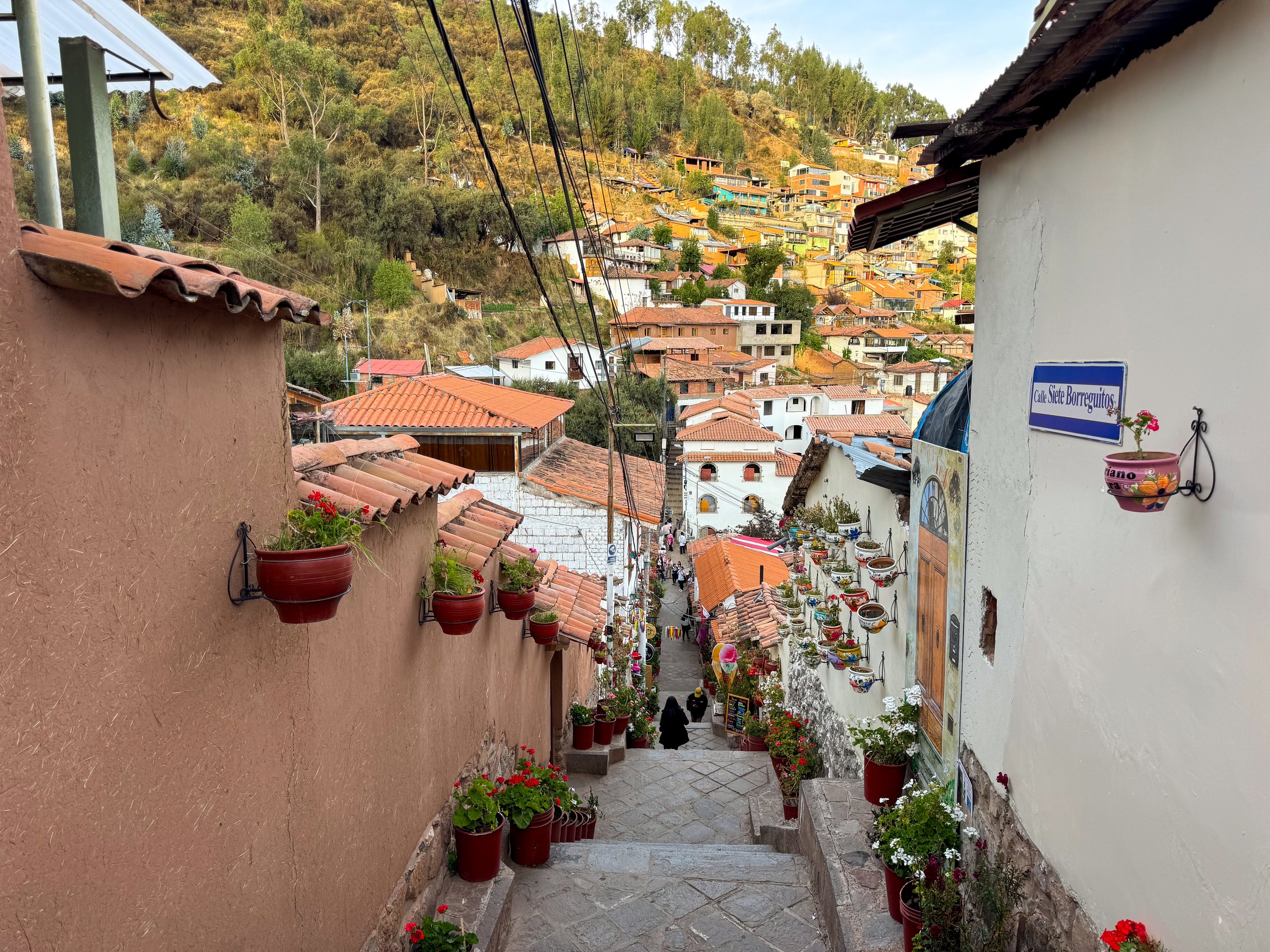
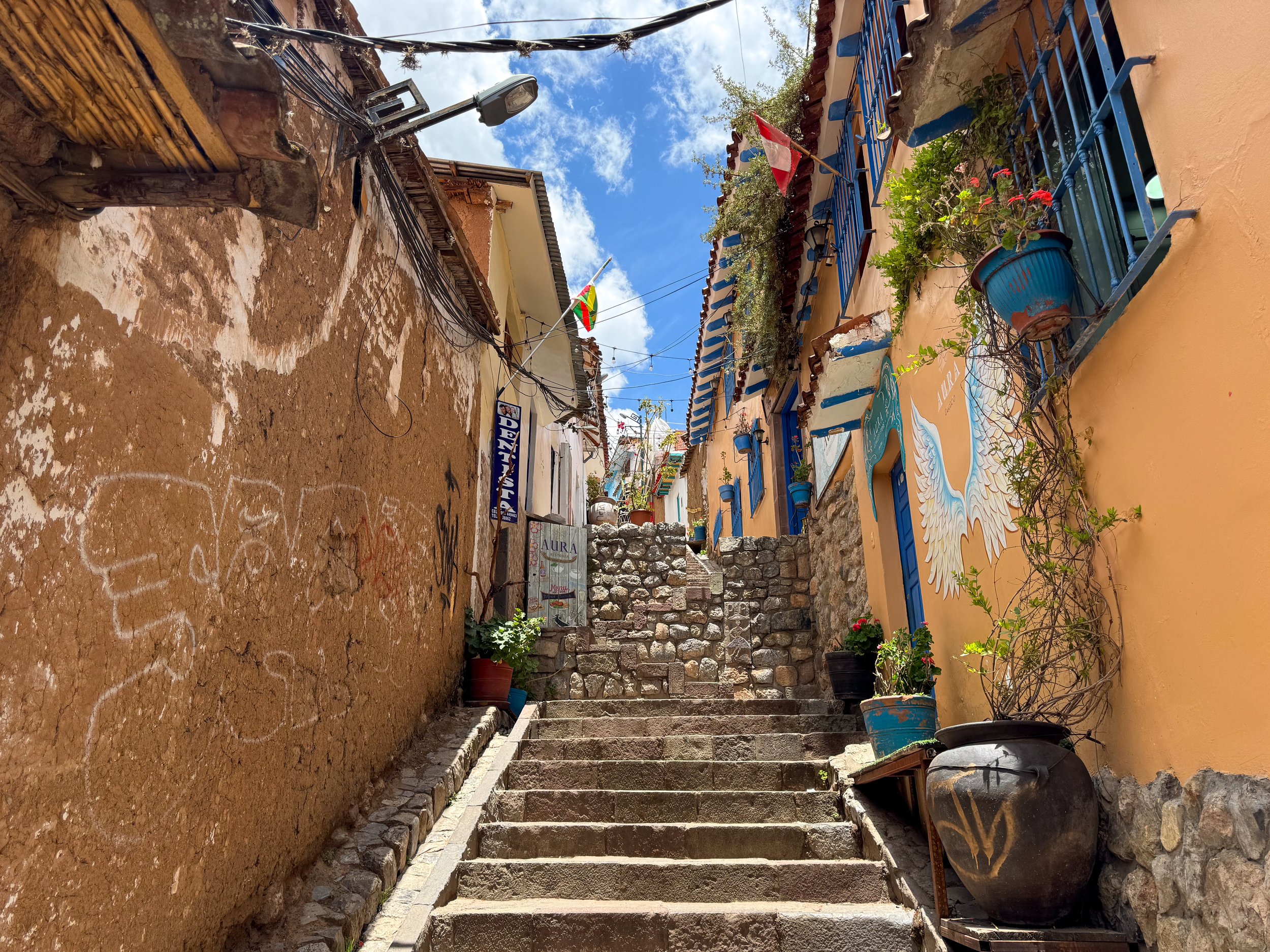
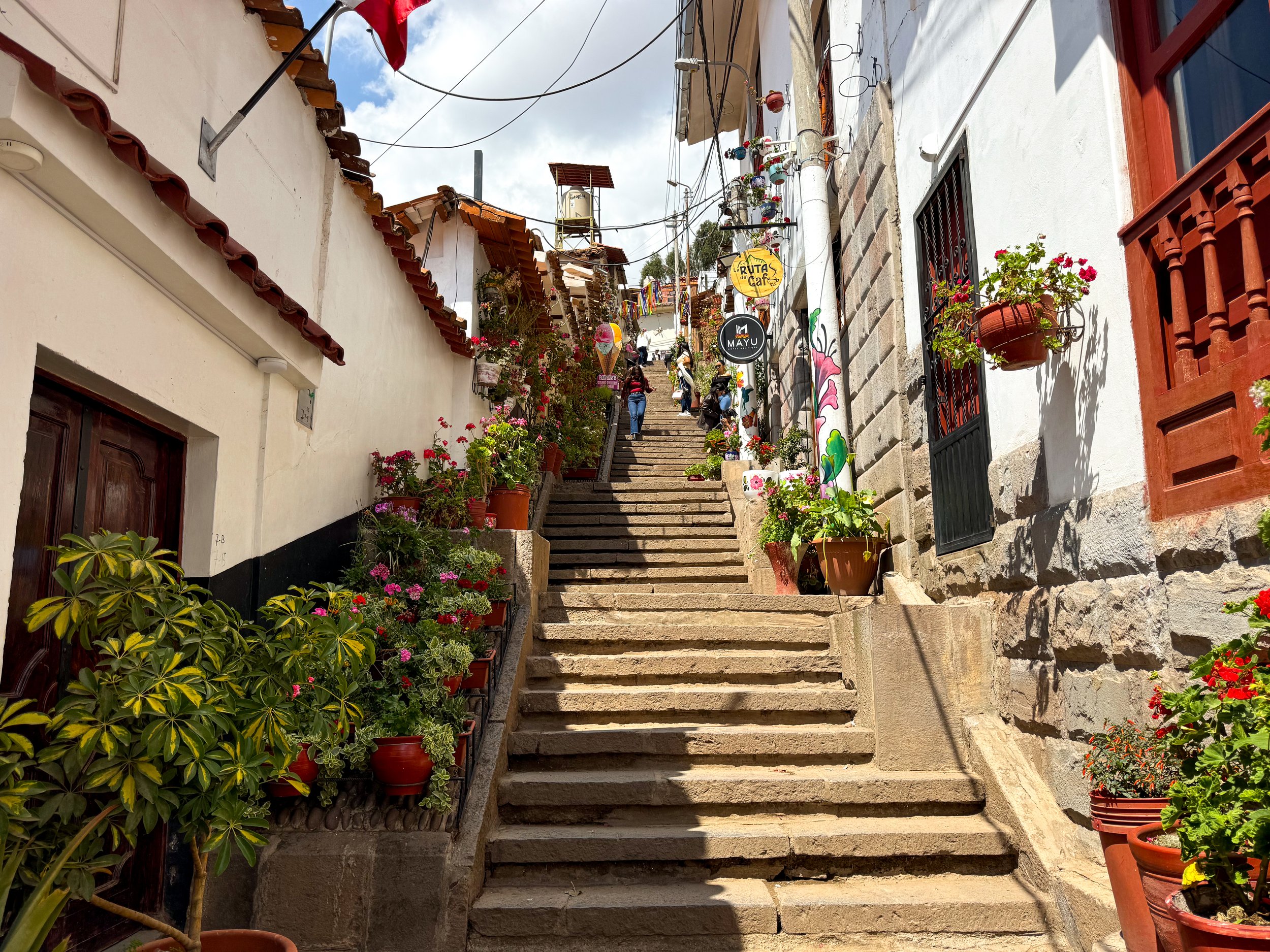
Cusco, Peru
Cusco is a modern city at the heart of the Incan Empire in Andes Mountains with archeological ruins, historic neighborhoods, museums and beautiful landscapes.
Neighborhoods
San Blas Neighborhood. A trendy yet quiet neighborhood with ancient Incan roads, steep staircases and narrow cobblestone streets home to a variety of cafes, restaurants, boutiques, art galleries, tattoo shops and small convenience stores. Many of the buildings are painted white with blue wooden doors, wall hung planters and vibrant murals. The neighborhood is close to several Incan ruins, the central plaza and has panoramic views of the Cusco Valley, its clay tiled roofs by day and twinkling lights at night.
Coripata. A bustling local neighborhood, you won’t spot another tourist here! There are women selling boiled quail eggs, fresh juice, wheel barrels and blankets with fruit, fried plantain chips and ice-cream from carts.
Santa Catalina. A quieter local neighborhood with an arch along its main road, chain hostels, stray dogs and city views. There’s not much going on in terms of restaurants, cafes, bars or nightlife.
Centro Historico. The central neighborhood of Cusco is home to the grand plazas, large stone cathedrals, historic architecture, Peruvian restaurants, clothing shops, souvenir stores and hotels. It’s a touristy area with peddlers calling you into their restaurants, trying to sell something or offering massages.
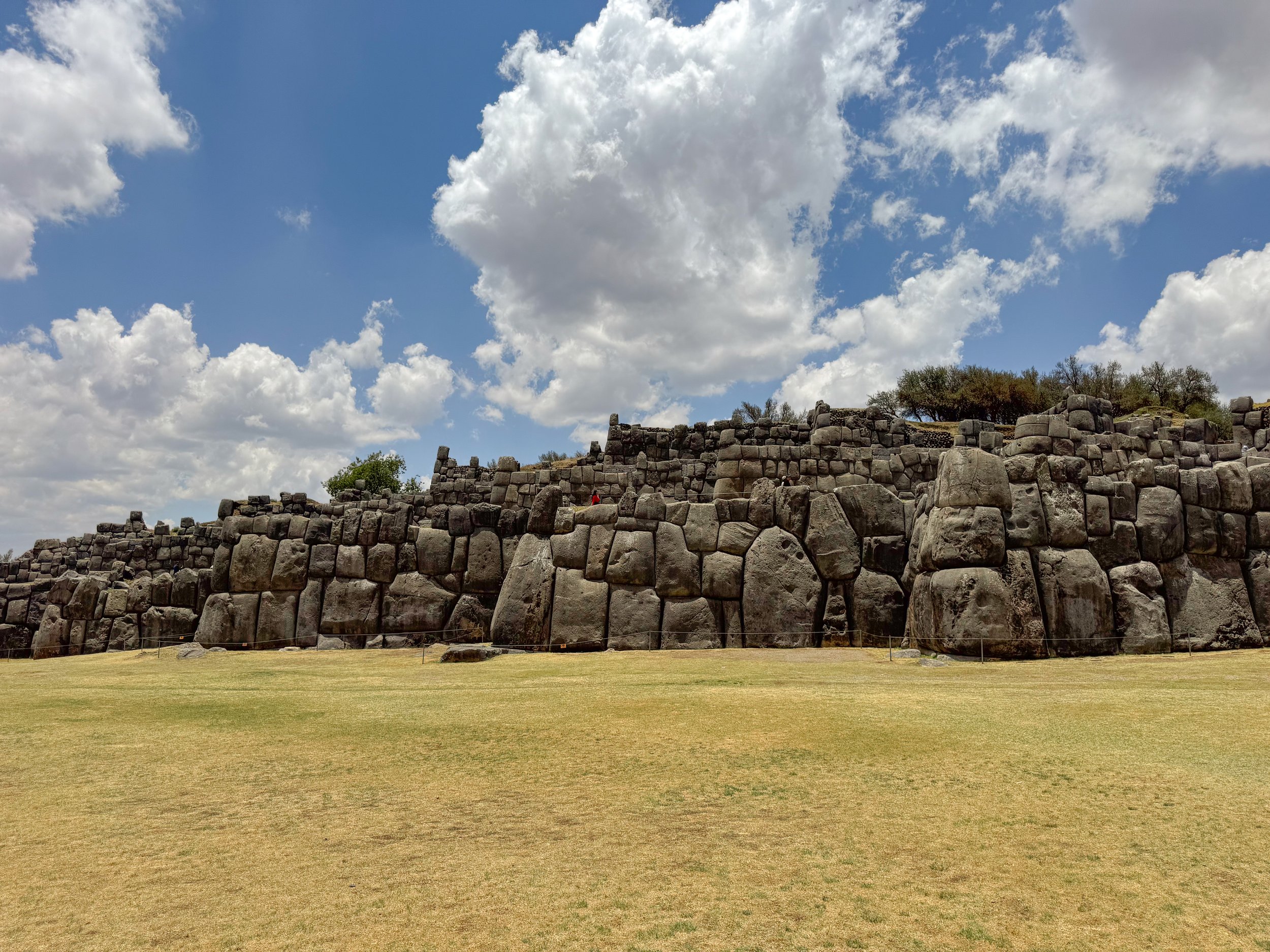
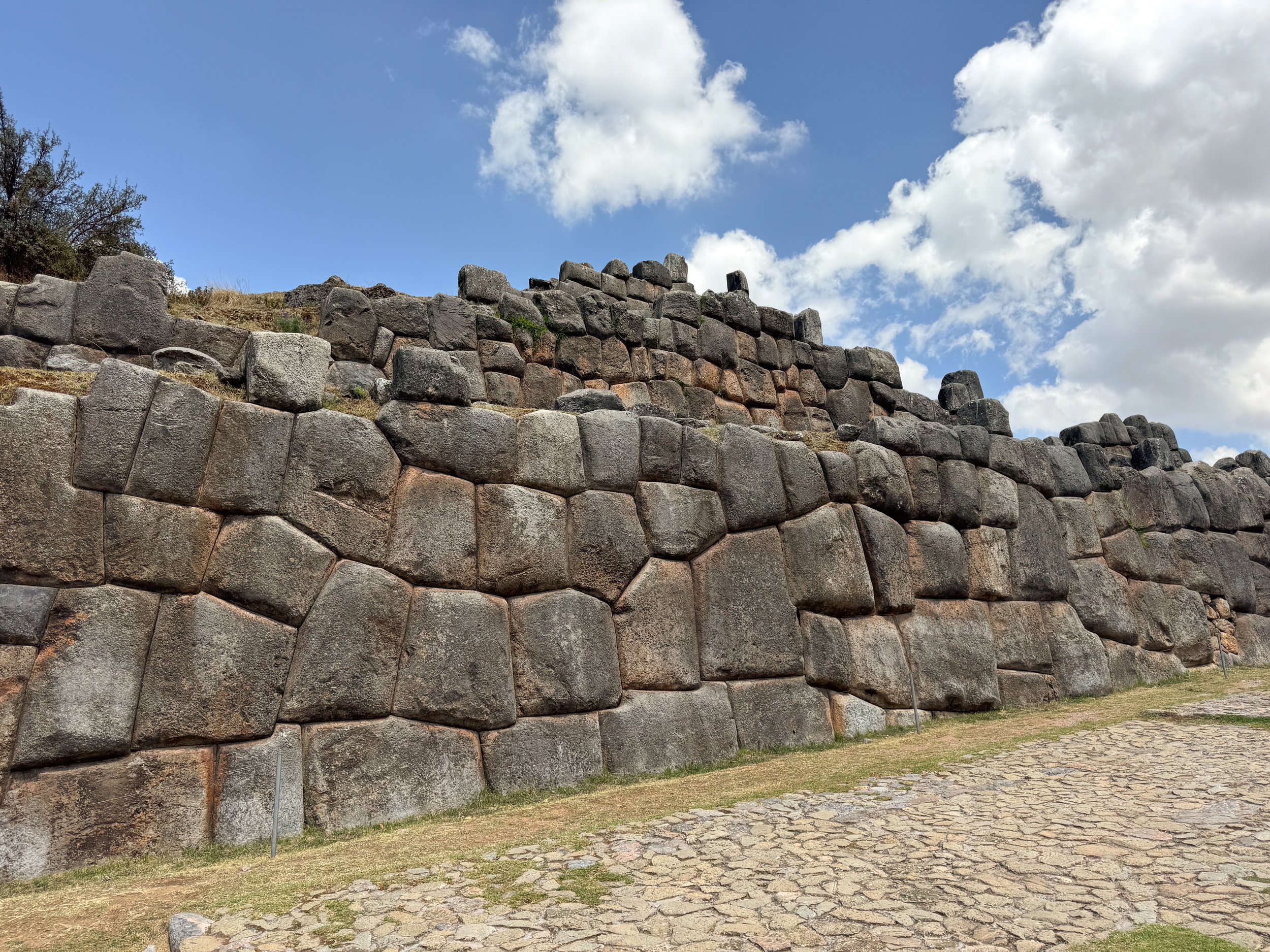
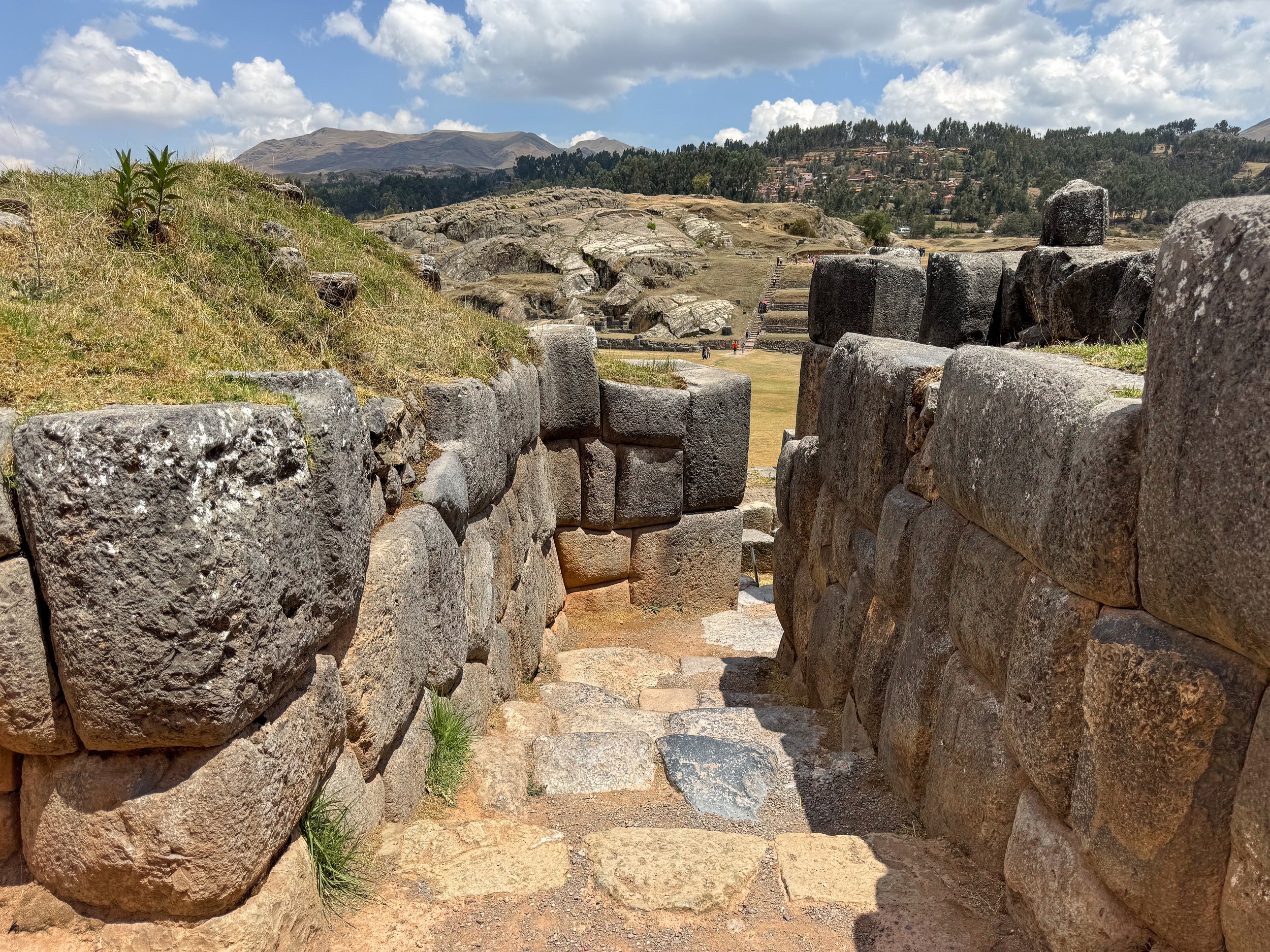
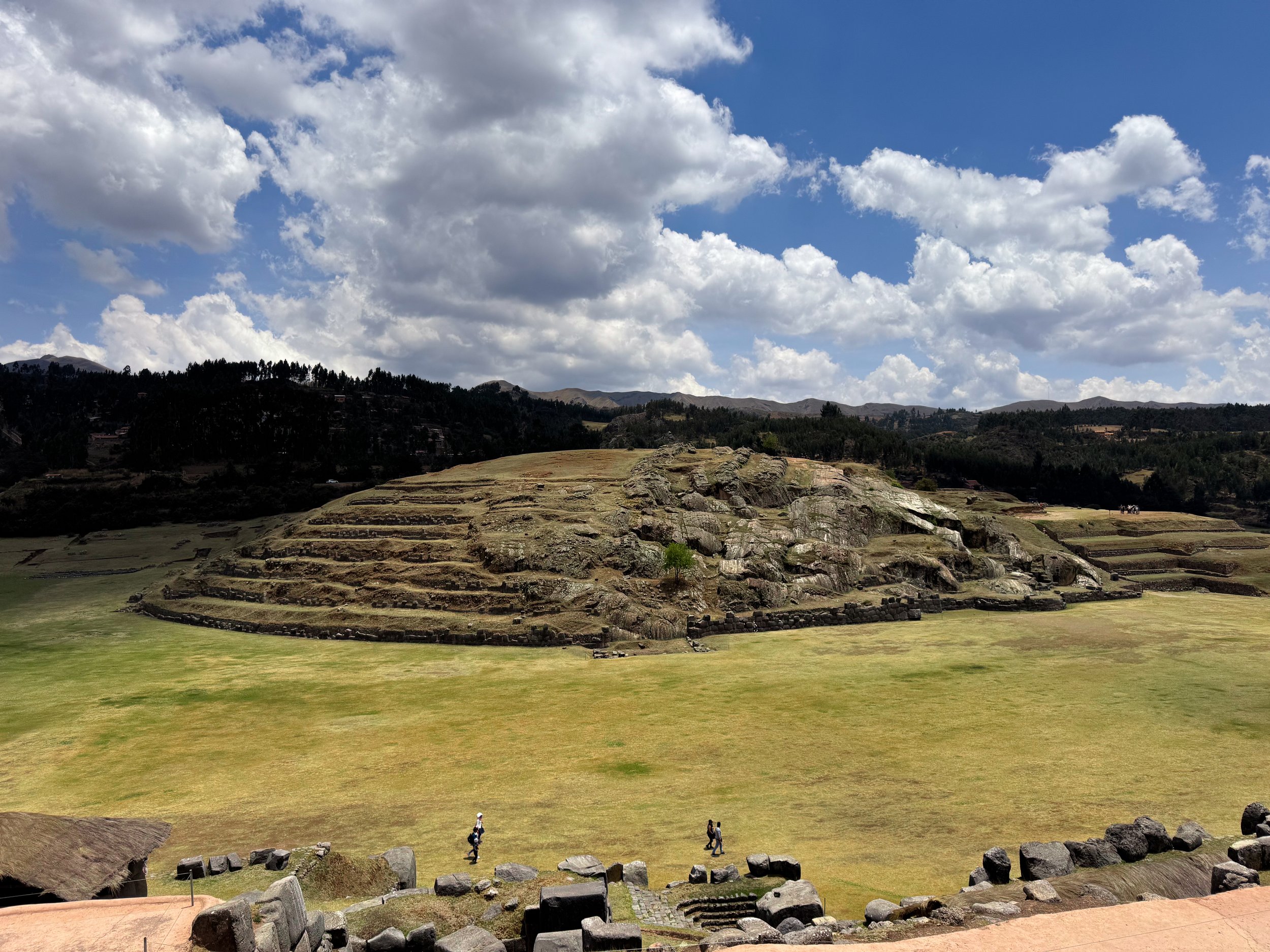
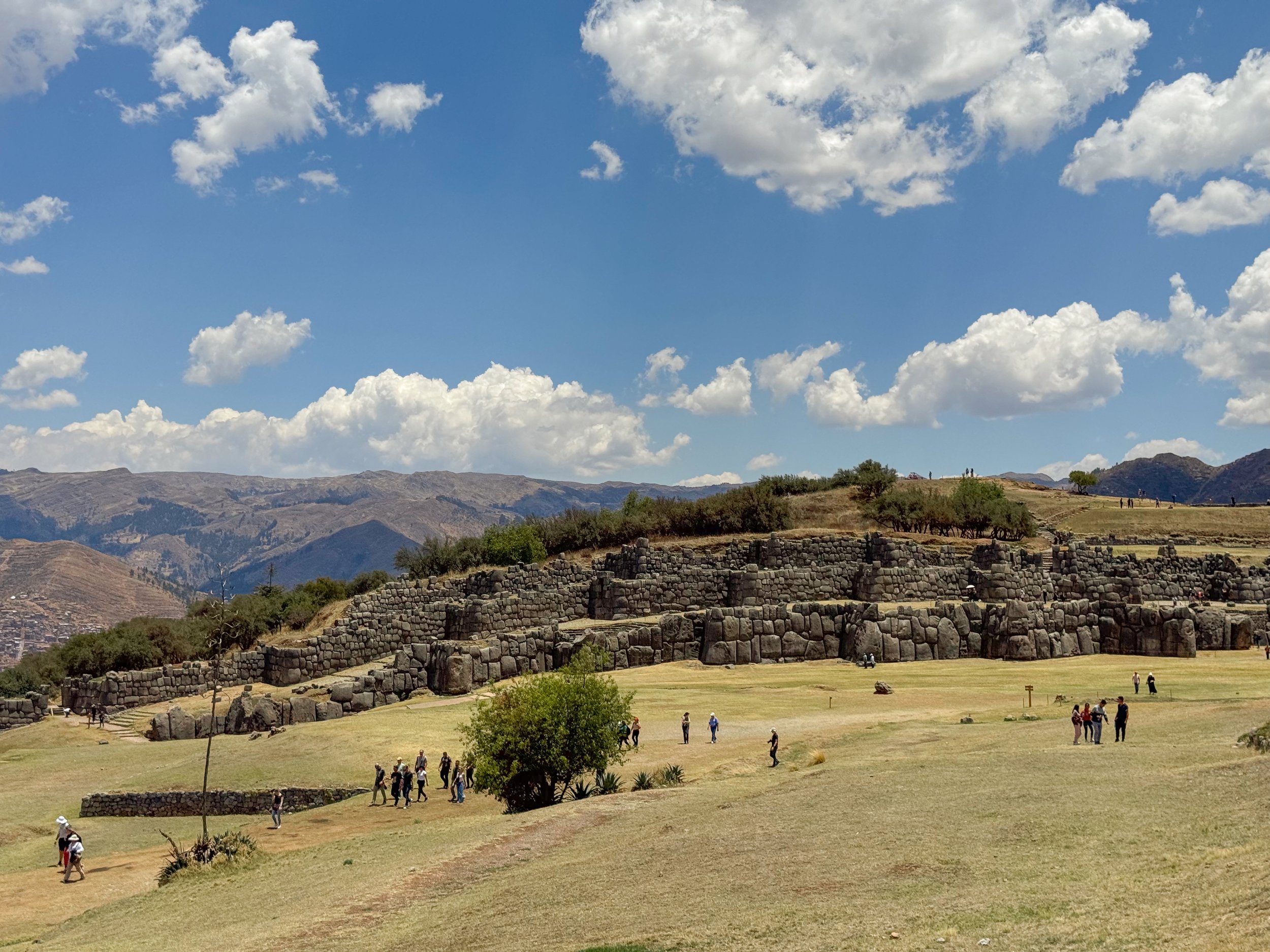
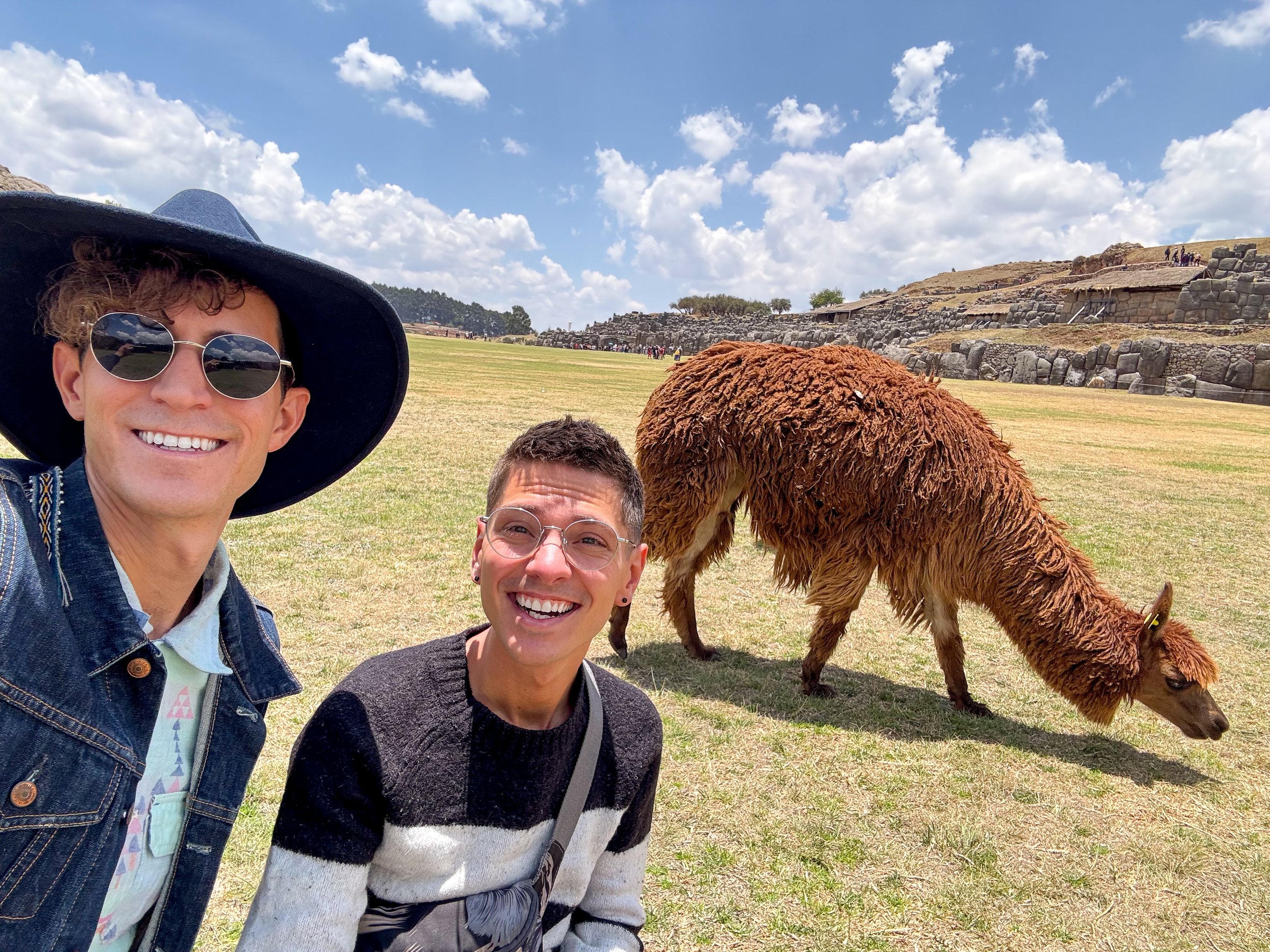
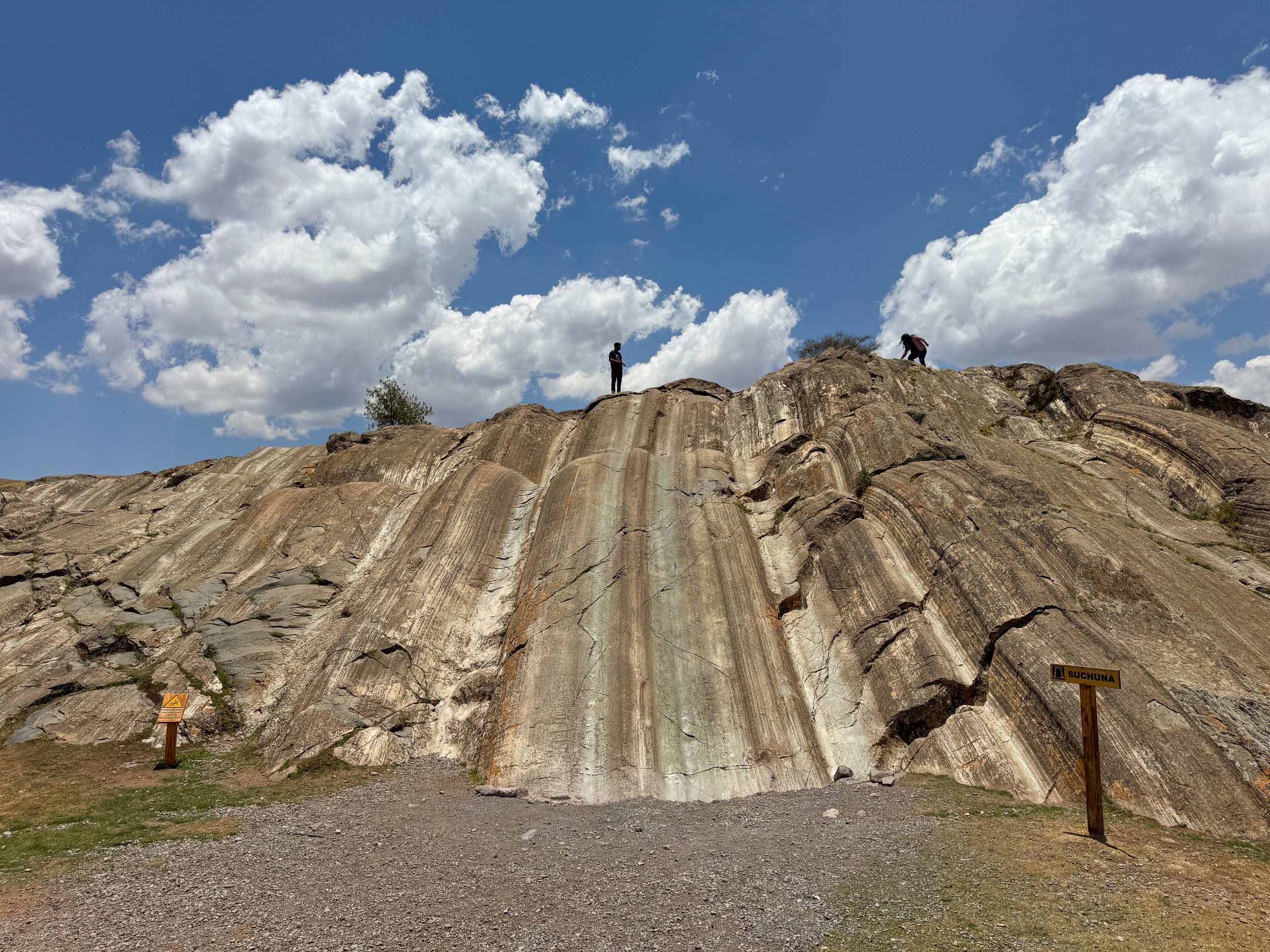
Incan Ruins
Cusco, the center of the Incan Empire is home to numerous ruins, ancient stone streets and former temples. We walked across the city visiting several of the sights during our stay.
Sacsayhuaman. The citadel of the Incan empire with a large stone fortress, royal thrones, carved rock temples, agricultural terraces and aqueducts.
Muyuq Marka. The central fortress made from three terraced stone walls shaped in a zig zag pattern with stone gates, guard posts, astronomical temples and platforms to store water.
Trono del Inca. A rock formation with thrones carved into it overlooking the fortress and Cusco valley.
Explanada. A central field with views of the stone walls and throne, home to a small heard of grazing alpacas.
Rodadero. A rock formation used as a stone quarry with section of carved stone, upside down stairs and a natural slide polished smooth over hundreds of years by people sliding down it. We joined the locals and slid down its surface with ease.
Chincana Chica. An underground cave leading through a narrow stone passageway used by the Incas for worship and storage.
Qochas Chincanas. A circular arena with a grassy field and stone bleachers surrounding it used for celebrations and sacrifices.
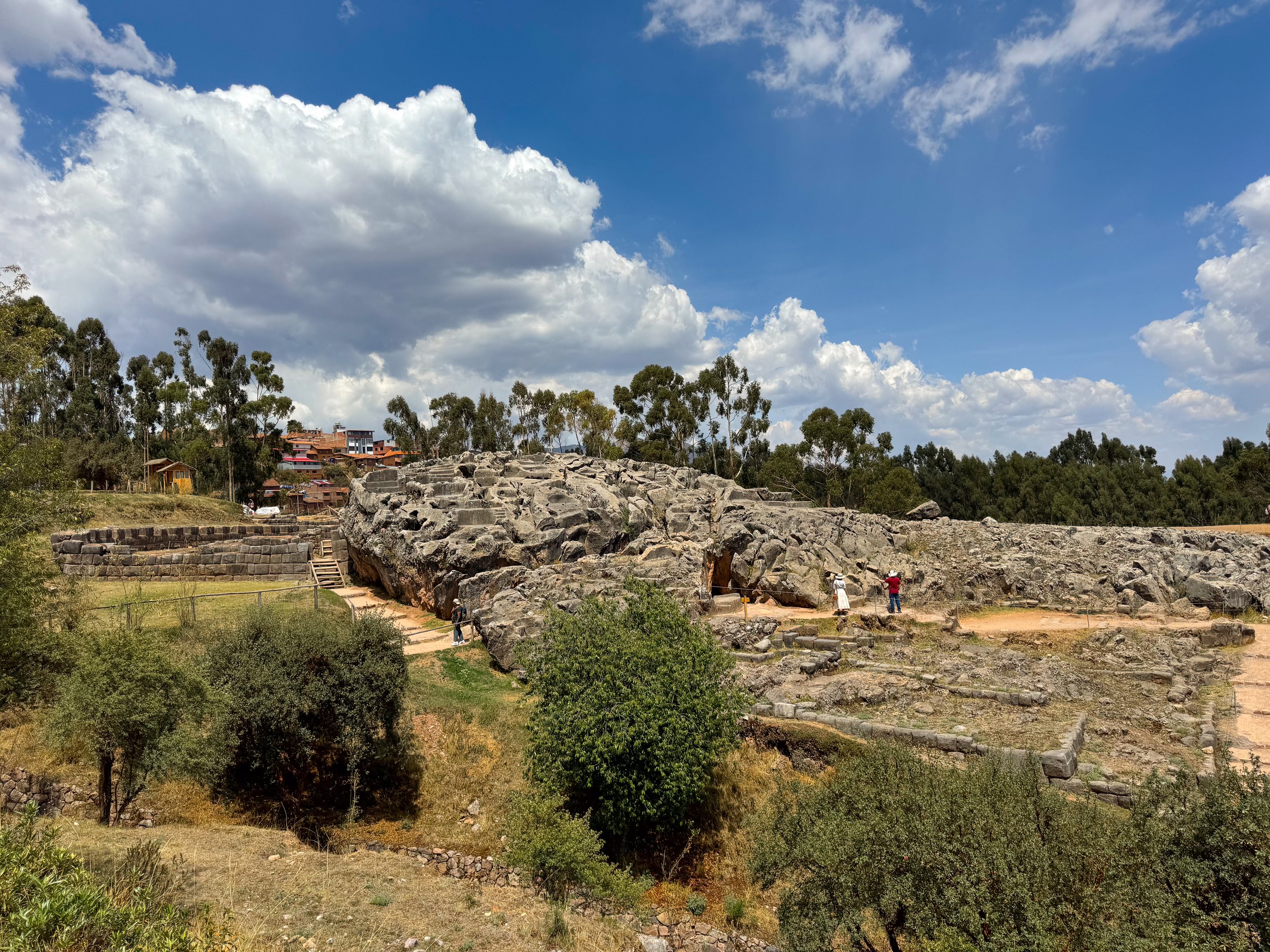
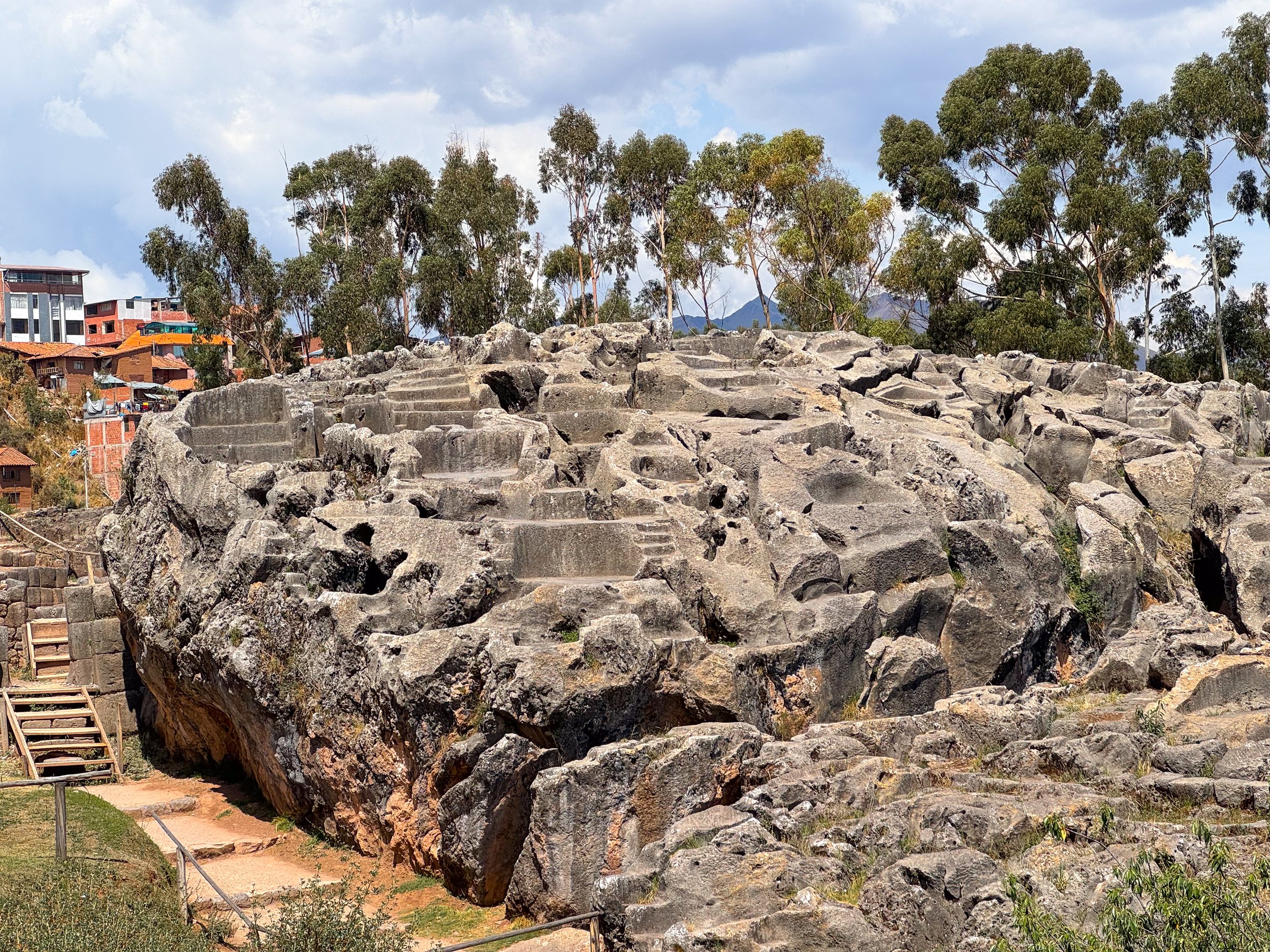
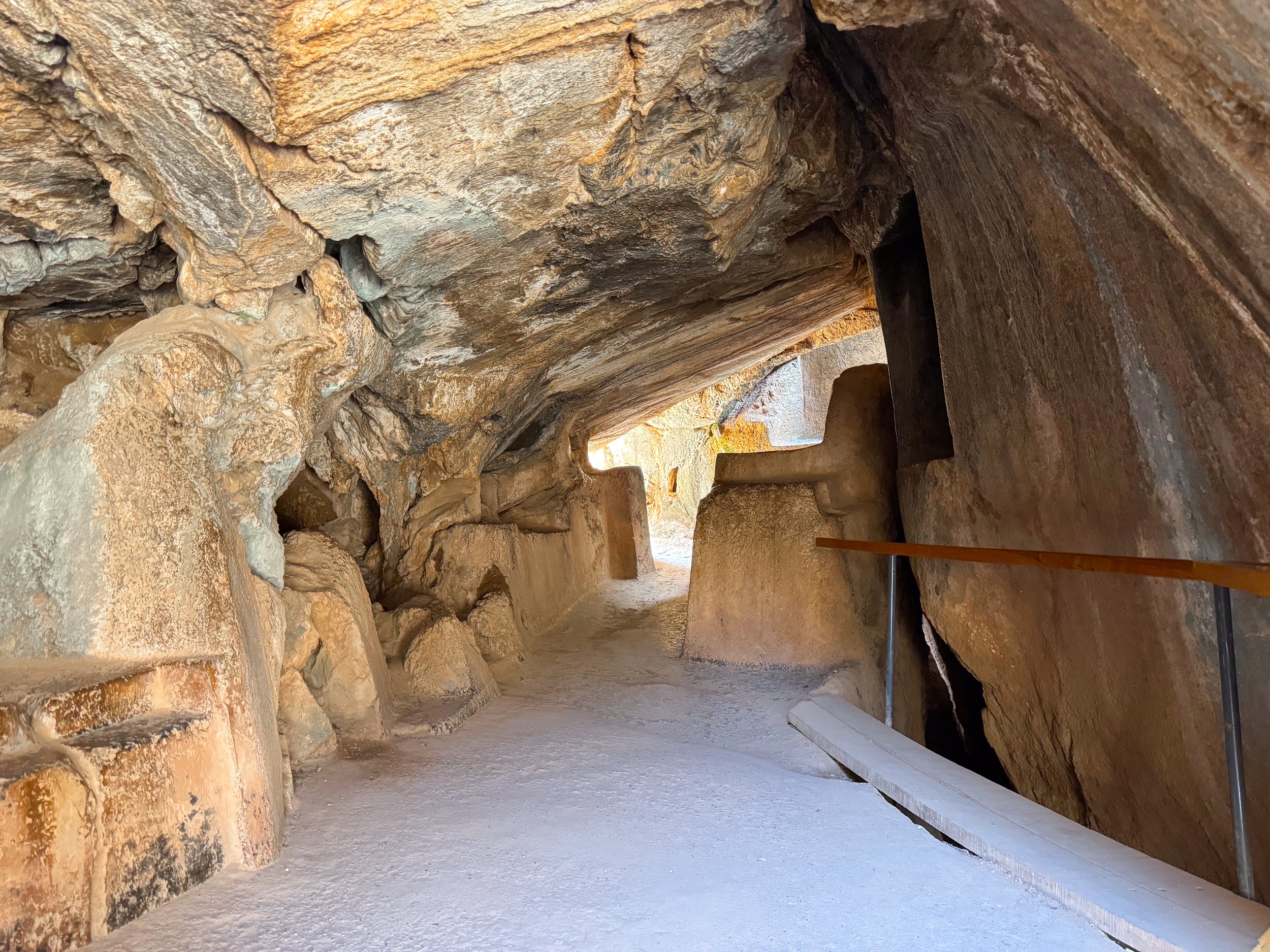
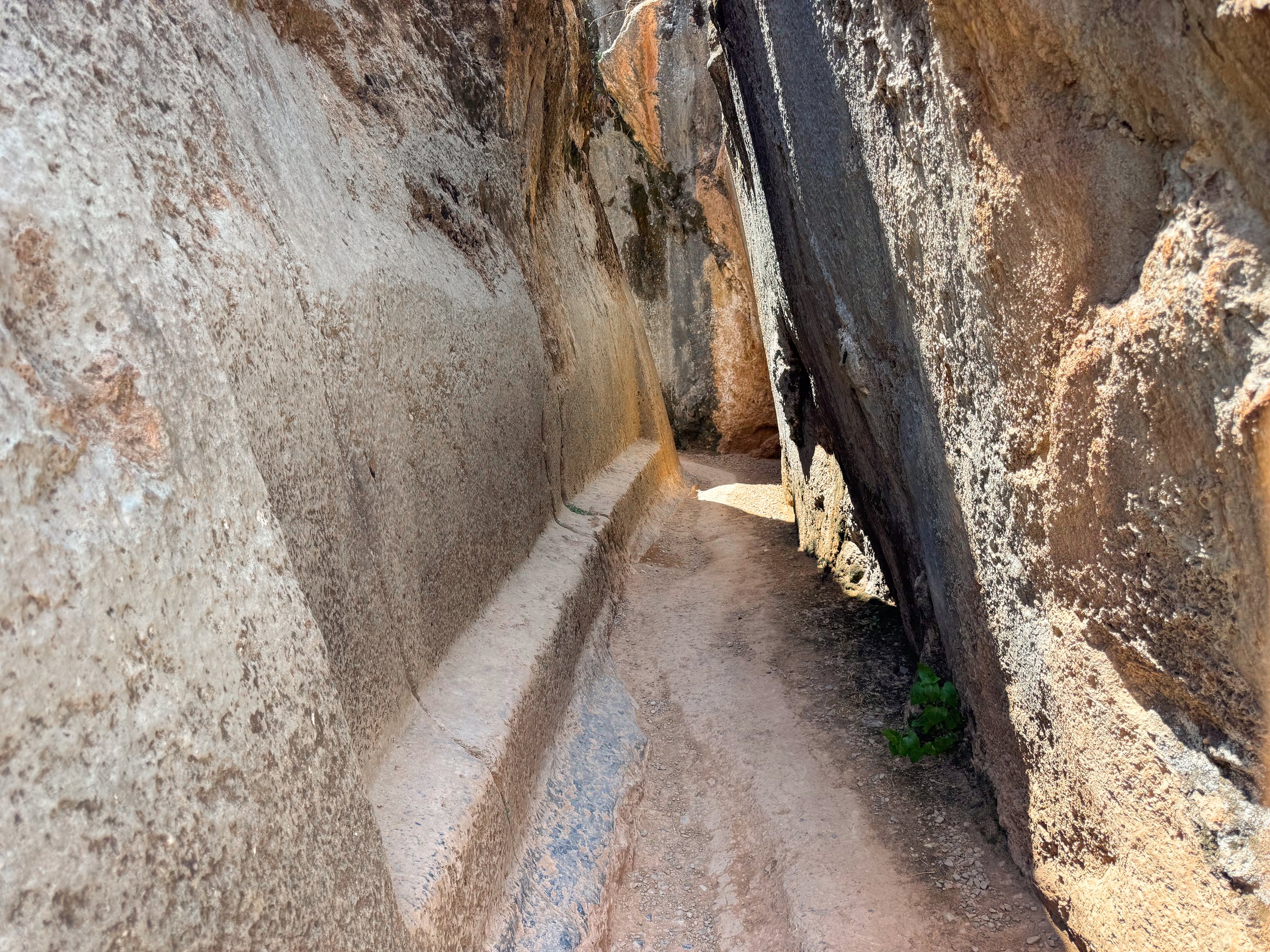
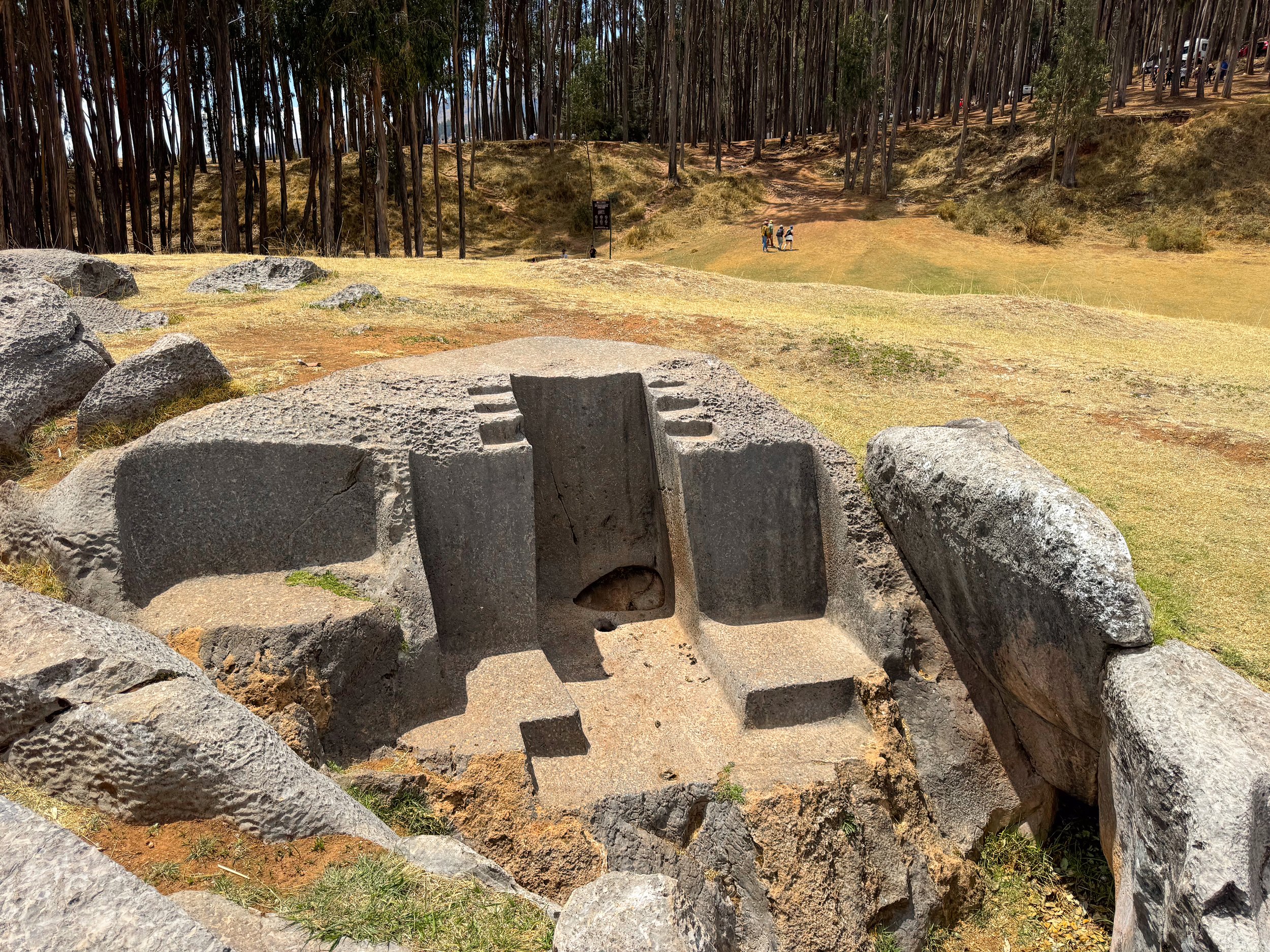
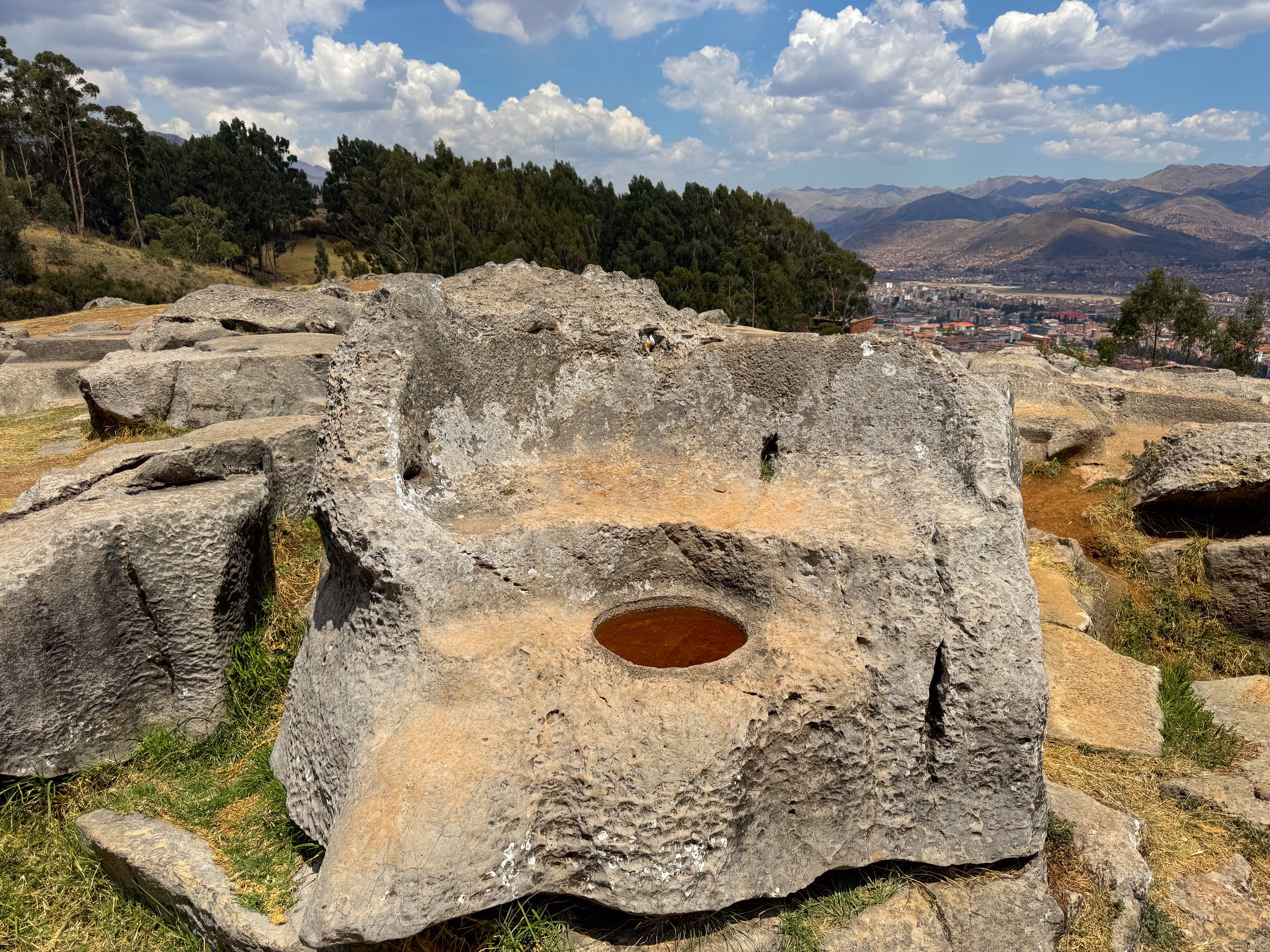
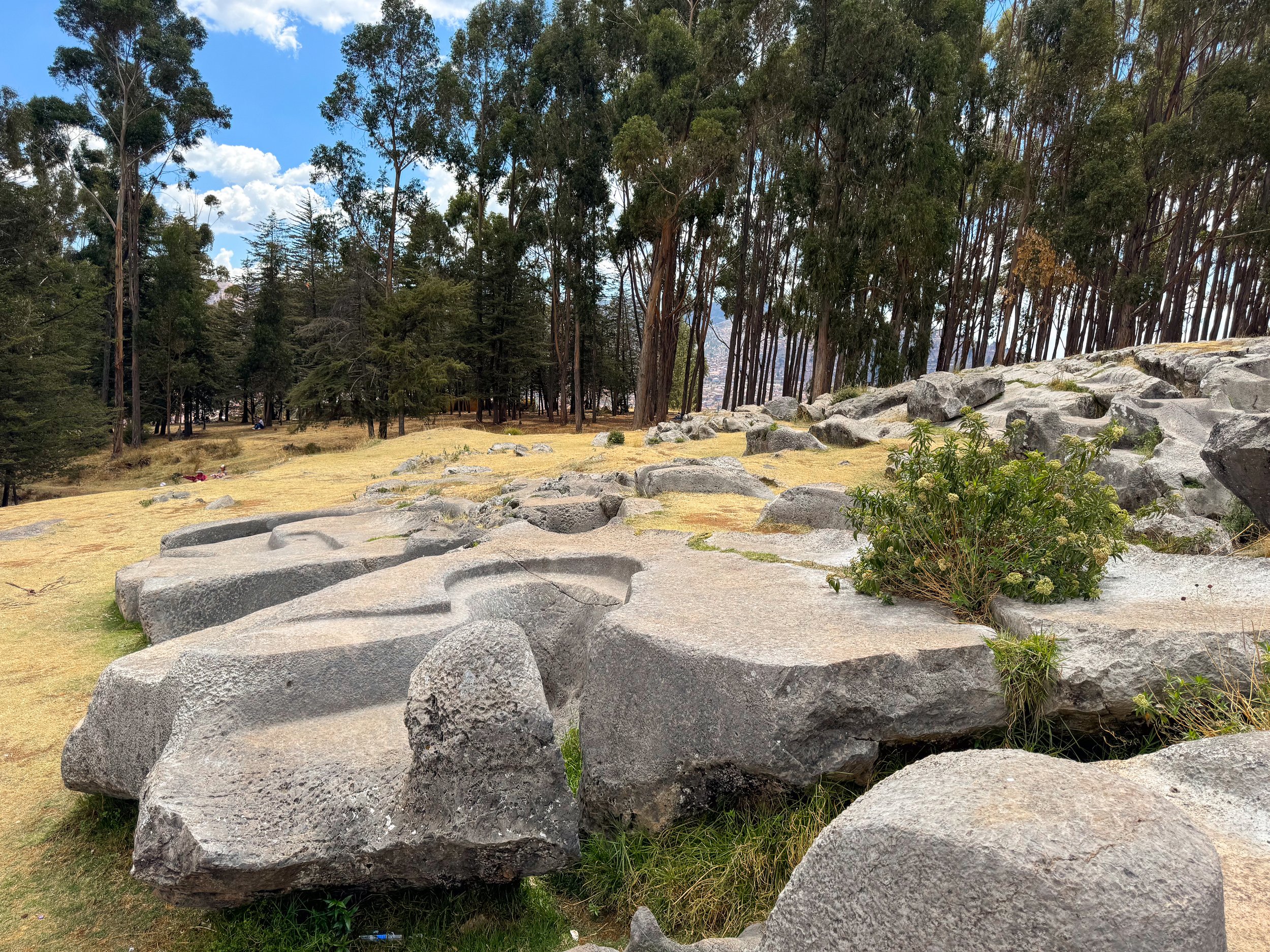
Q’enco. Stone ruins of a ceremonial sight used by the Incas to sacrifice humans and animals. We followed a guided path through an amphitheater used to watch sacrifices, past observation thrones, stone sacrificial beds, pools for blood to accumulate, through caves used to leave offerings and a canal for blood to flow along, including one shaped like a snake. The top is forbidden to walk on.
Q’enco Chico. A smaller ceremonial sight below Q’enco used for the same sacrificial purposes. Unlike Q’enco, this sight can be walked on and explored more freely. Today, it’s a popular picnic sight.







Calle Hatunrumiyoc. A historic street with Incan stone walls on both sides. It’s a good place to see the complexity of the stonework made by the Incans. The most prominent feature is, Piedra de los 12 Angulos, a large stone carved with 12 corners and perfectly fitted with the surrounding stones.
Calle de Siete Culebras. An Incan street with stone walls and carvings of snakes.
Qorikancha Temple (Golden Temple of the Sun). The ruins of an Incan temple dedicated to the worship of the sun. Prior to the Spanish conquest, the temple was plated in gold. It was stripped off and a cathedral was built on top of its walls. The temple remains mostly intact and can be toured from within the cathedral. We climbed the bell tower of the cathedral overlooking Cusco.
Sapantiana Aqueduct. An ancient stone aqueduct bridge and canal used to transport water by the Incas and still used today.
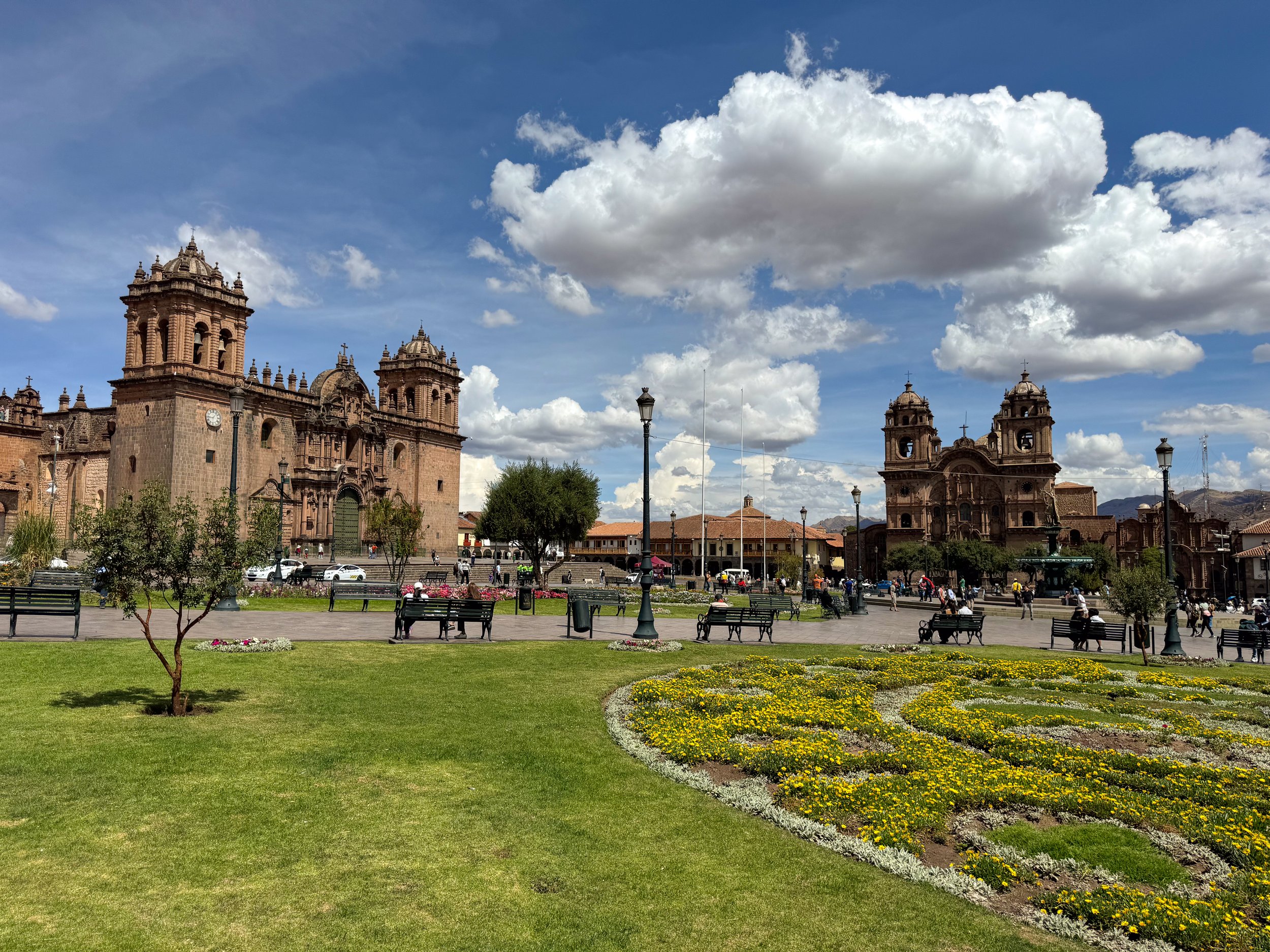
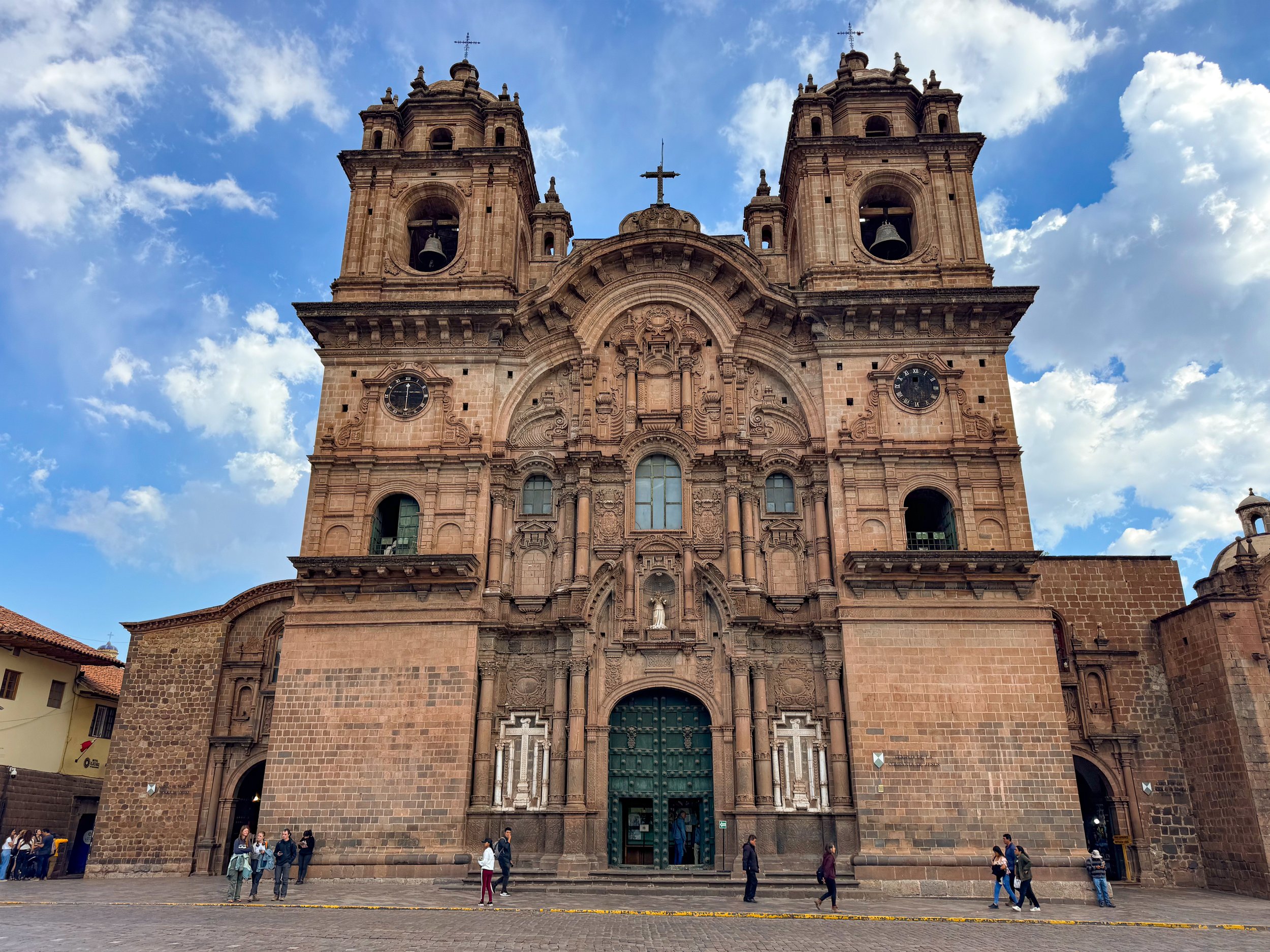
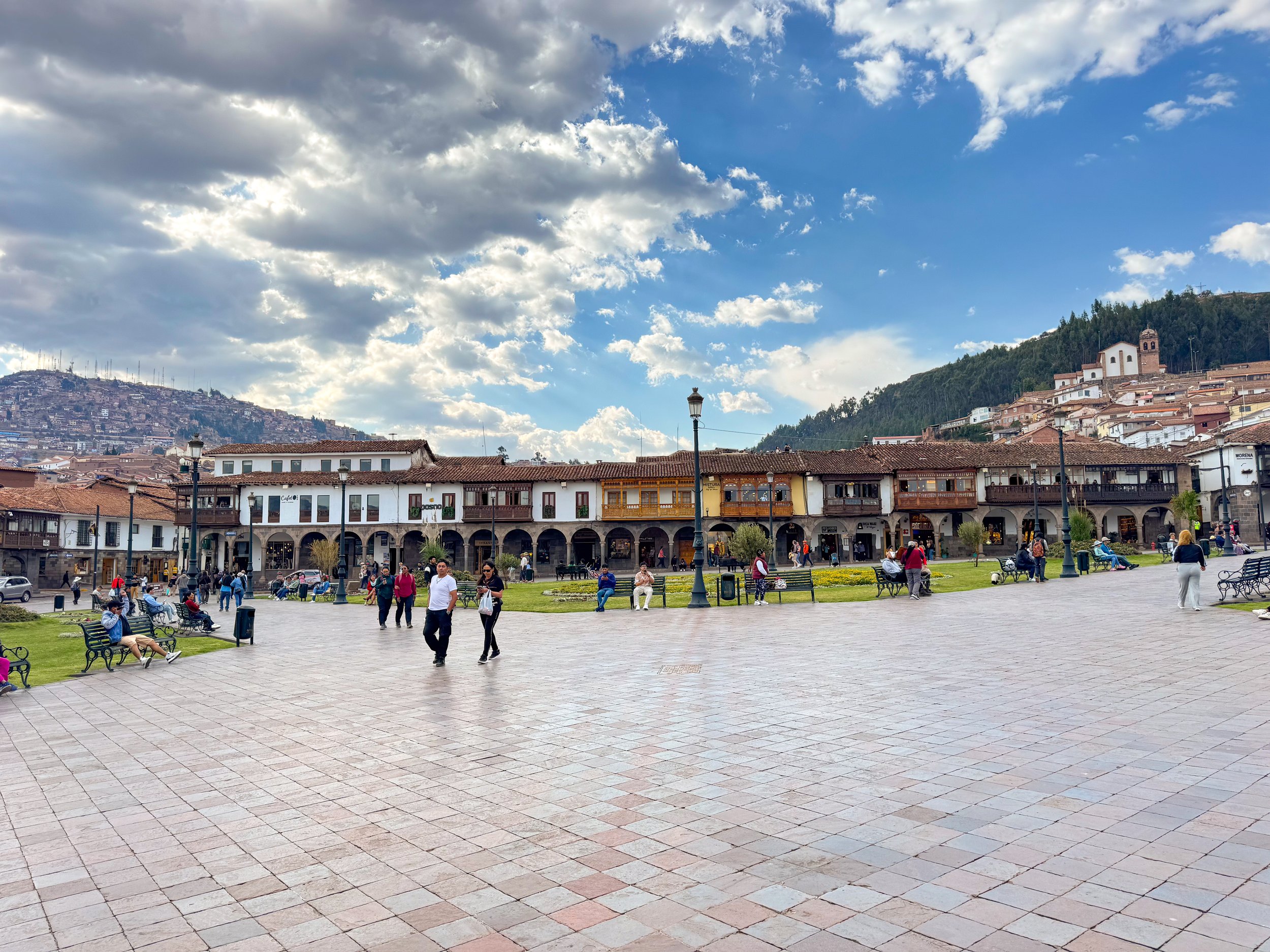
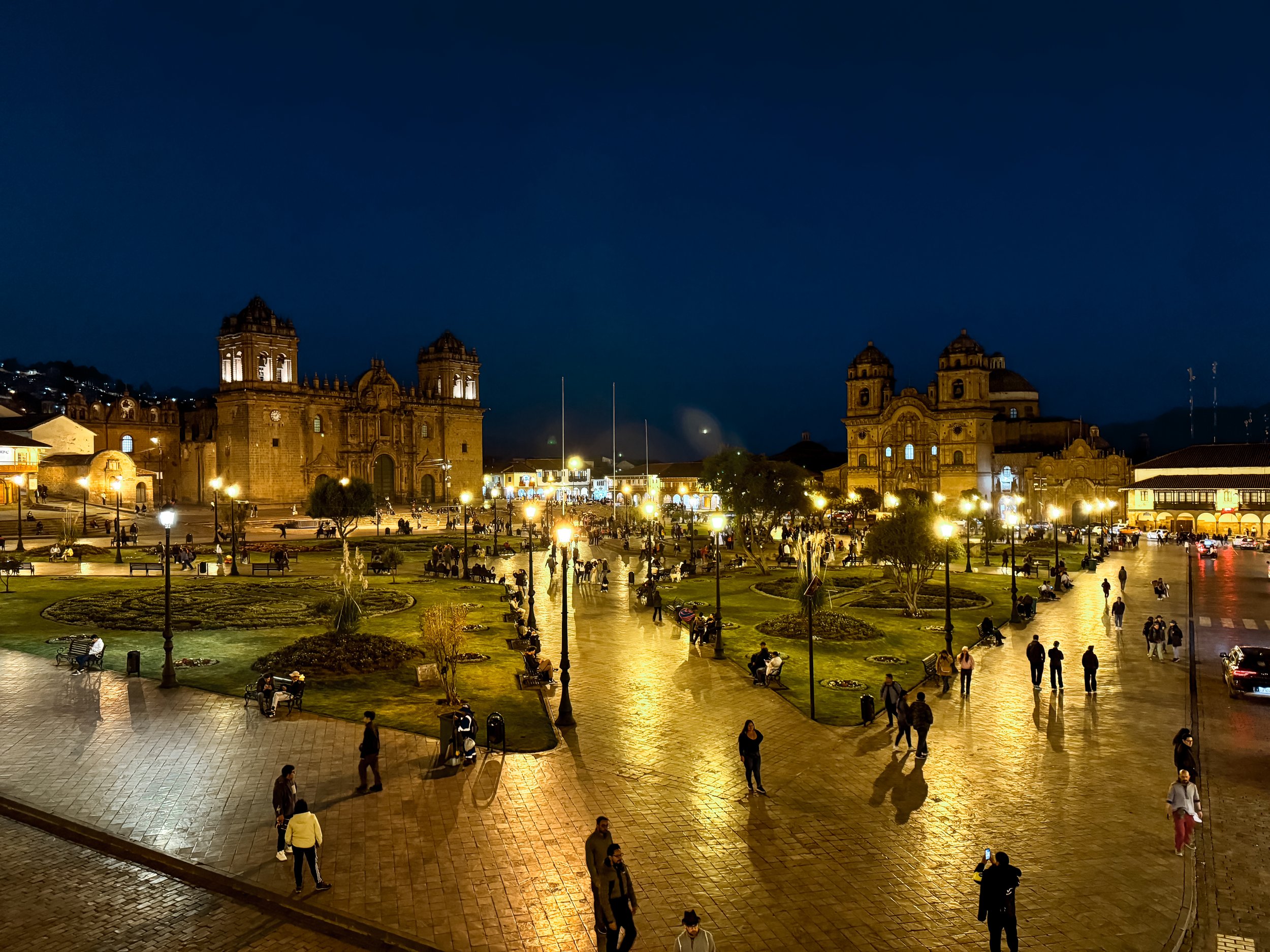

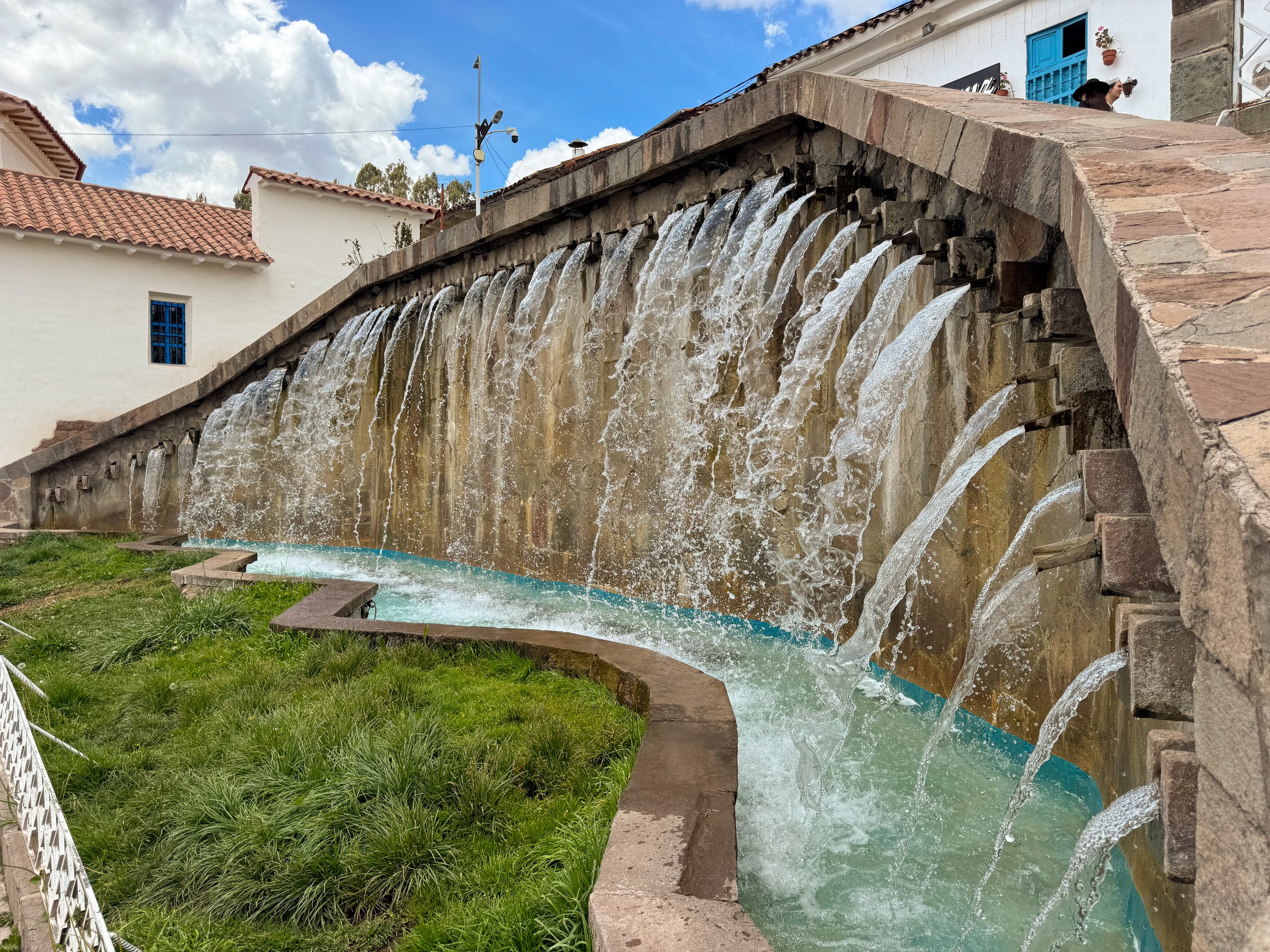
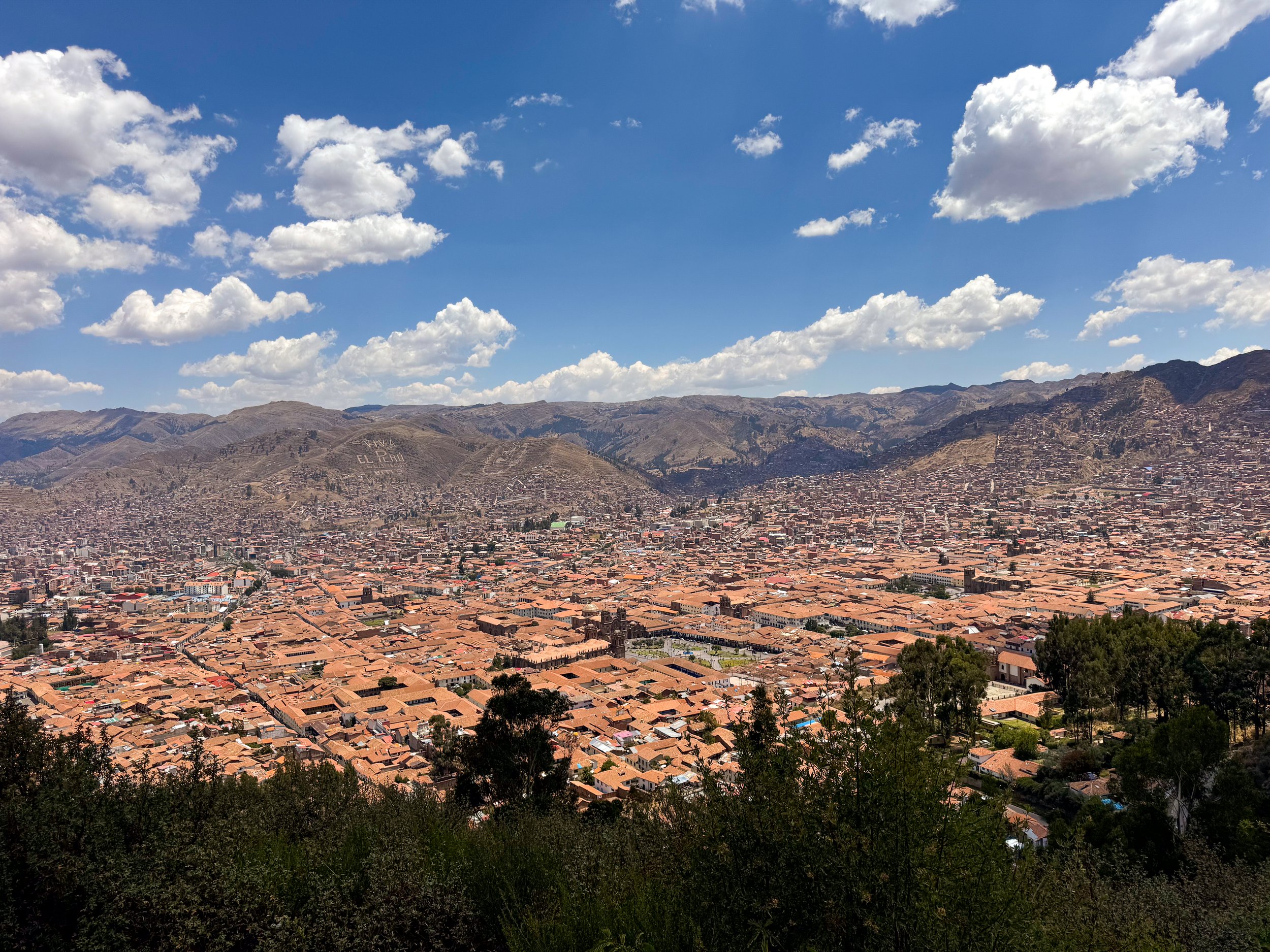
Sights & Museums
Plaza Mayor. The central plaza in Cusco with two large cathedrals, balcony lined buildings, flowering gardens and a central monument dedicated to the Incas. It is a hub for restaurants, tour companies, massage parlors, textile stores and souvenir shops.
Cusco Cathedral. The cathedral at the south side of Plaza Mayor with an ornate stone facade and two large bell towers. We toured the gold gilded interior, visited the crypt and climbed to the second level of both bell towers overlooking the plaza.
Museo de Arte Pre-Colombia. A museum dedicated to the pre-Colombian civilizations and cultures of ancient Peru. The ground floor galleries separate artifacts by the material they are made from including shell, silver, gold, wood, stone and ceramic. The second floor galleries separate artifacts by the regions and cultures of ancient Peru through Incan times to the Spanish conquest.
Qorikancha Museum. An underground museum beneath the lawn outside of the Qorikancha Temple with artifacts including ceramics, textiles, mummified remains and skulls with surgical markings and deformations. The museum exits through the lawn with the ruins of Incan stones and an aqueduct.
Plaza San Blas. A plaza with a large fountain, church, small museums, an artisan market and shops
Mirador San Blas. A romantic plaza with views of the neighborhood and Cusco. Couples attach love locks to the rails and make out on the park benches.
The San Cristobal Viewpoint. A scenic lookout above Cusco with panoramic views of the clay tiled roofs of the city, the stone cathedrals and the distant hillside.
The Cristo Blanco View Point. A lookout high above the city with a small white painted copy of Rio’s Christ the Redeemer.







Markets
San Blas Market. A small neighborhood market catering to a mix of locals, expats and backpackers with vendors offering a robust mix of fresh produce, vegetables, meats, fish, dairy and dry goods. We bought a variety of Peruvian potatoes, squash, fruits, Andean cheese, eggs, milk, butter, flour and yeast to cook meals throughout the week.
The market is the perfect spot for a local lunch with restaurants serving Peruvian and vegan cuisine. We ate at Cevicheria de Yanet, sharing a bowl of mixed ceviche made with squid, trout and mackerel. It came with sides of chicharon de calamari, seafood soup, canchas and homemade chicha.
San Pedro Market. A large and colorful market with vendors selling handicrafts, fruits, vegetables, grains, herbal remedies, snacks, candies, flowers and meats. The meat market is a bit intense with butchers selling whole pigs, skinned horse heads, bloody bull horns and organs.
The most popular reason to come here is for the fresh juices, Peruvian style street food and aisles of small restaurant stands. The cooks at each stand called for us to sit down, competing with their neighbors, as we walked past the benches of customers and busy kitchens with large steaming pots. After scanning the menus, we sat down and ordered a plate of fried trout with lentils, rice, salad and a bowl of vegetable soup for 8 Sols each.










Where to Eat & Drink
Fusion Andina. A restaurant overlooking Plaza Mayor and the city’s hillside with a menu of Peruvian and Andean cuisine. We came here for dinner, overlooking the twinkling lights of the city at night while sipping on Peruvian wine. The menu includes dishes made with Andean trout, alpaca and guinea pig.
Ofrenda Peruvian Healthy Food. A Peruvian restaurant with colorful and beautifully plated meals and desserts. Come for the causas, ceviche, cheesecake and chocolate cake.
Cafe Dwasi. Come here for their specialty coffee, cappuccinos with llama artwork foam and breakfast dishes like pancakes or omelets.
Kaldi Coffee. A café and bar in San Blas with a rooftop views of Cusco, artisan coffees, empanadas, ice cream and cocktails.
Cafetoe. A coffee shop on the corner of Plaza Mayor with balconies overlooking it. We came here one chilly night for a Peruvian hot chocolate, made from milk and cocoa powder
ERA. A rooftop bar in San Blas above the Mirador de San Blas overlooking Cusco. Come here for the 2 x 30 Sol happy hour with Pisco cocktails.
Something Special. A restaurant and bar with views overlooking the clay tiled roofs, plaza mayor and Viva El Peru sign. We ordered a chicha Pisco sour and Cervesa Raymi, an artisan Cusco brewed beer.
Pizzos. Come here for the clay oven pizzas and cocktails. They have a 2 x 25 Sol happy hour for regular and flavored Pisco Sours.
KM.0. A restaurant and cocktail bar with a long list of drinks and a 2 x 28 Sol happy hour.
Barden. A bar and restaurant with a terrace overlooking Cusco and a garden with warm string lights suspended from the trees above.
What to Eat & Drink
Coca Tea. The popular Peruvian herbal tea made from the leaves of the coca plant used to combat altitude sickness. After drinking the tea, it’s common to chew on the leaves for their medicinal properties.
Trout. Andean trout is populous in the high mountain lakes and rivers. It’s served grilled, fried and as ceviche.
Potatoes. Peru is known for having thousands of variety of potatoes. They’re served mashed in causas, fried and in soups & stews.
Choclo con Queso. Boiled Peruvian corn wrapped in a grilled piece of Peruvian cheese.
Alpaca & Guinea Pig. We don’t eat meat however we saw both animal on the menu in restaurants across the city. Alpaca can be served as a steak while guinea pigs are often served whole.
Tumbo. A popular Peruvian fruit that’s a cross between a passion fruit and pomegranate.
Cherimoya. A green scalloped tropical fruit with a custardy interior and large black seeds with a taste similar to strawberry ice cream.
Cusqueña. One of Peru’s national beers easily identifiable by its bottle cap with Machu Picchu on it and a bottle embossed in Incan stone work. It comes in three varieties, Dorado (Golden), Wheat and Negro (Stout).
Inka Chips. A local brand of potato chips made from Peruvian potatoes.
Where to Stay
Inti Wasy. We stayed at an Airbnb in San Blas neighborhood with panoramic views of the Cusco Valley. The private apartment had a comfy bed, well outfitted kitchen and laundry machine. The space feels authentic with Incan and Peruvian decor. We were thankful to have an incredibly kind host and family of doggies to greet us throughout our stay. Book here!
Cusco Plaza Hostel. A boutique hotel on the corner of the Plaza Mayor in the city center. We visited a friend of ours staying here. The rooms are basic but the rooftop is a tranquil place to enjoy a bottle of Peruvian wine and the views of the city’s rooftops and cathedrals. Book here!
Good to Know
The Boleto de Touristo. A ticket that includes entry to a majority of the Incan ruins in Cusco and the surrounding valleys as well as several museums in the city. Tickets can only be purchased by cash in person at the tourist office one block from the Plaza de Armas
The Altitude. Cusco is 3,339 meters (11,152 ft) above sea level. It takes some adjusting to get used to. After a few days, we no longer felt winded or tired.
Language. People in Cusco speak Spanish. Outside of the restaurants and shops in the Centro Historico, few locals speak English.
Cash vs. Card. Cash is preferred at businesses and museums across Cusco. When using Peruvian Sols, make sure to carry small bills and coins.
For Next Time…
Return to Machu Picchu. We visited the ancient Incan city in 2016, passing it by on our recent trip to Cusco. When we return for a third tome, we would love to revisit the awe inspiring world wonder that is Machu Picchu.
Ollantaytambo. Our tour of the Sacred Valley did not include enough time at Ollantaytambo. Next time, we plan to stay at one of the hostels and take at least an entire day to explore the ruins, mountain trials and terraces.
Skylodge. Having seen the iconic cliffside hotel made from geometric glass pods suspended from the mountainside, we fully intend of staying here during our next trip to the Sacred Valley.
Visit The South Valley. We had a tour booked to visit the Incan and Wari ruins in the South Valley but couldn’t make it due to an emergency. This will be one of the first sights we see next time in Cusco.
The Mountain Lakes. Due to melting ice, several mountain lakes and lagoons have formed over the past decades. The most famous are Humantay Lake with turquoise waters and Laguna Roja with chocolaty red waters.
The Bolivian Desert
The Bolivian Desert hosts some of South America’s most stunning natural sights. Within its expanse are the world’s largest salt flats, a staggering number of volcanos, colorful lagoons, abstract desert rock formations, geysers and hot springs.
The Bolivian Desert
The Bolivian Desert hosts some of South America’s most stunning natural sights. Within its expanse are the world’s largest salt flats, a staggering number of volcanos, colorful lagoons, abstract desert rock formations, geysers and hot springs. We spent four days road tripping across the desert, traveling hundreds of miles from La Paz and ending in the Chilean Atacama Desert.
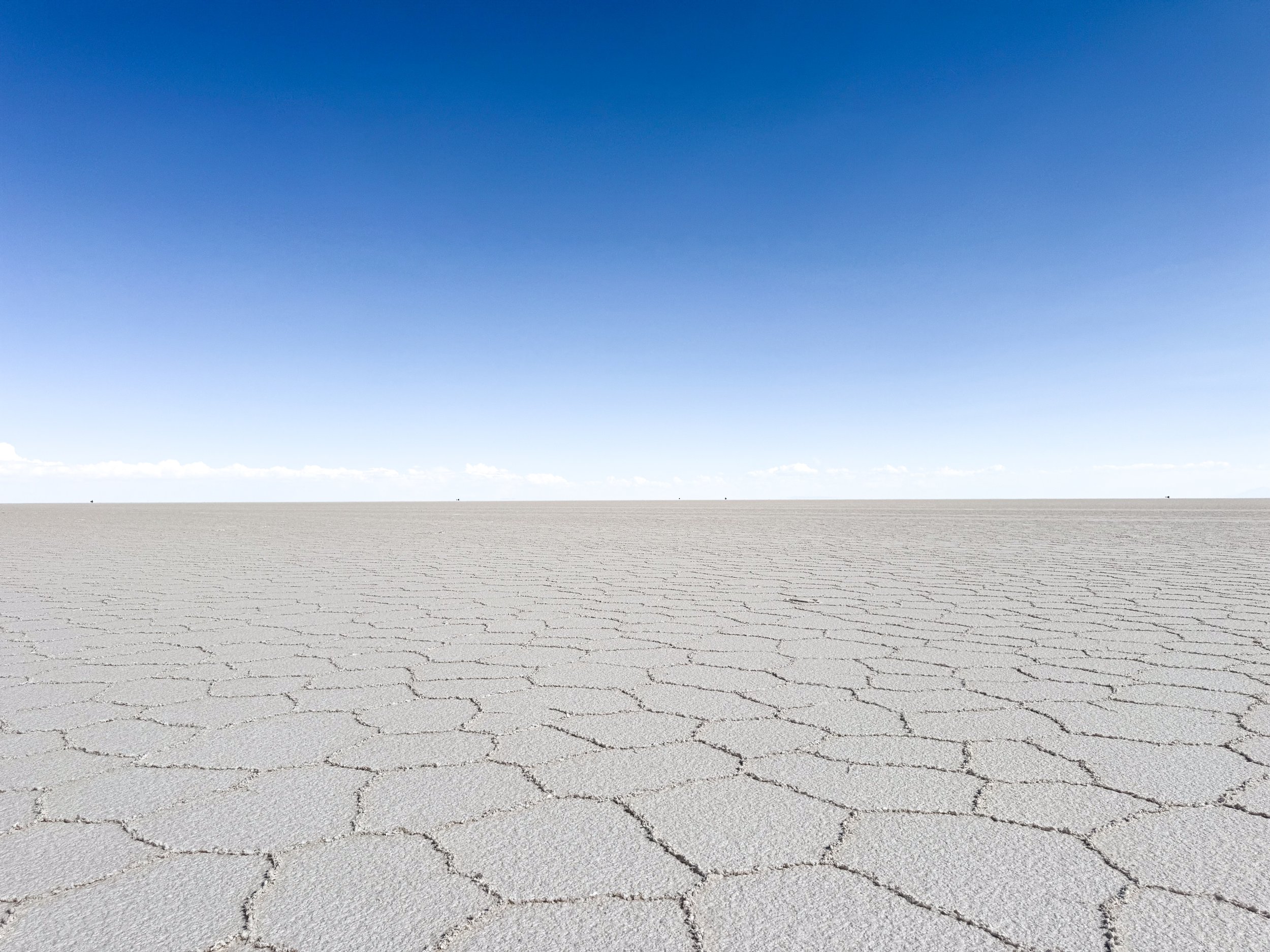
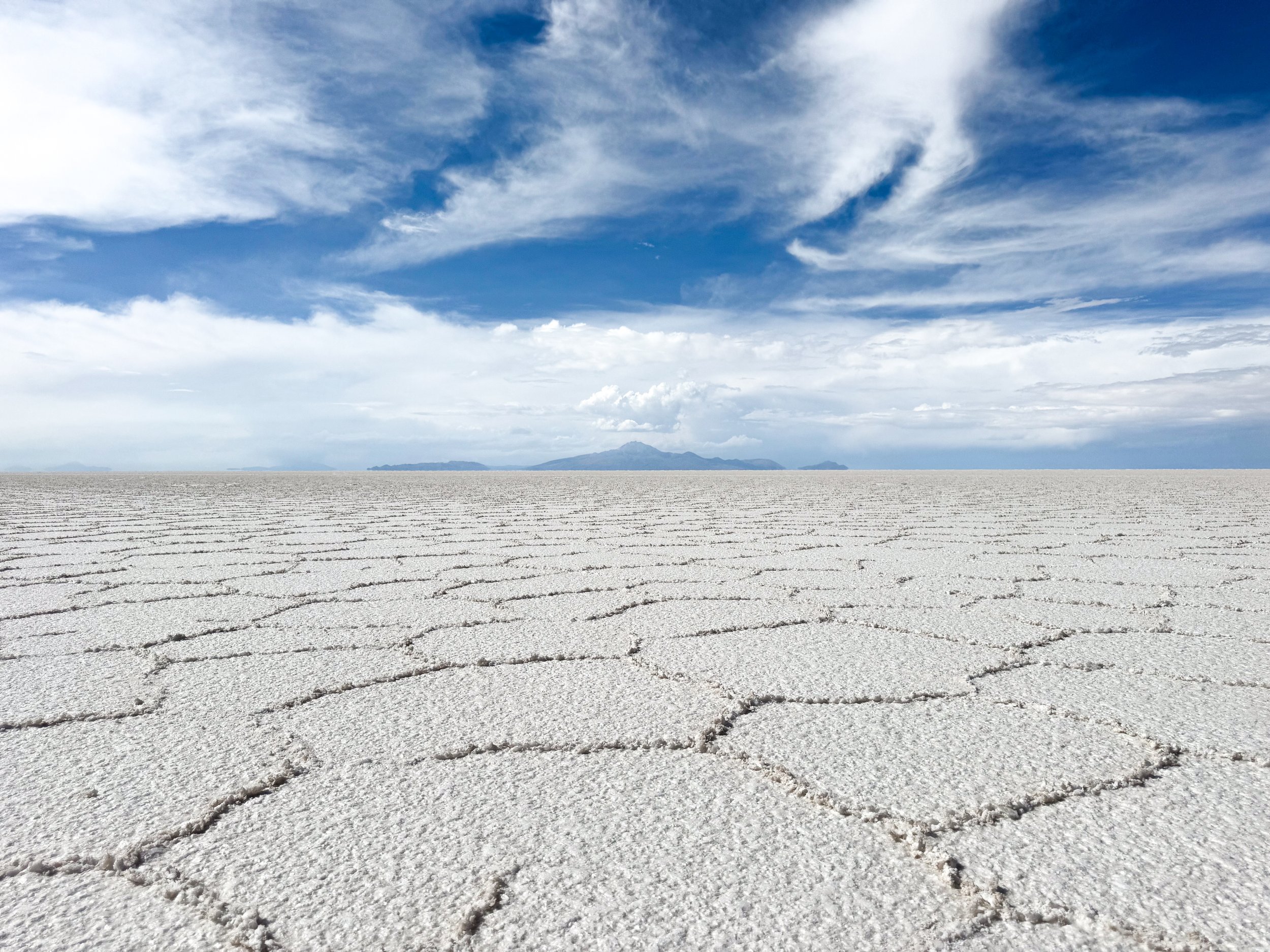
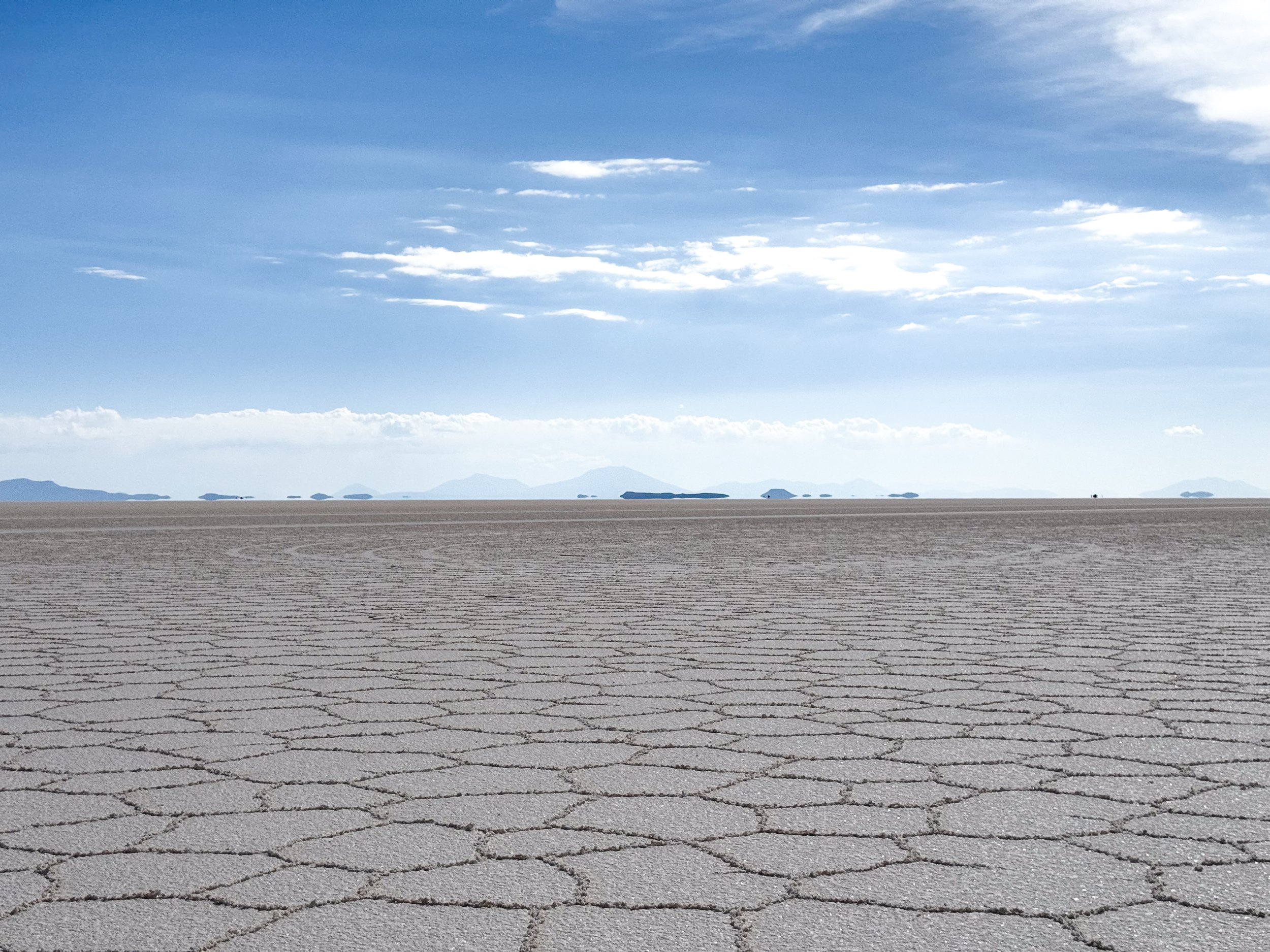
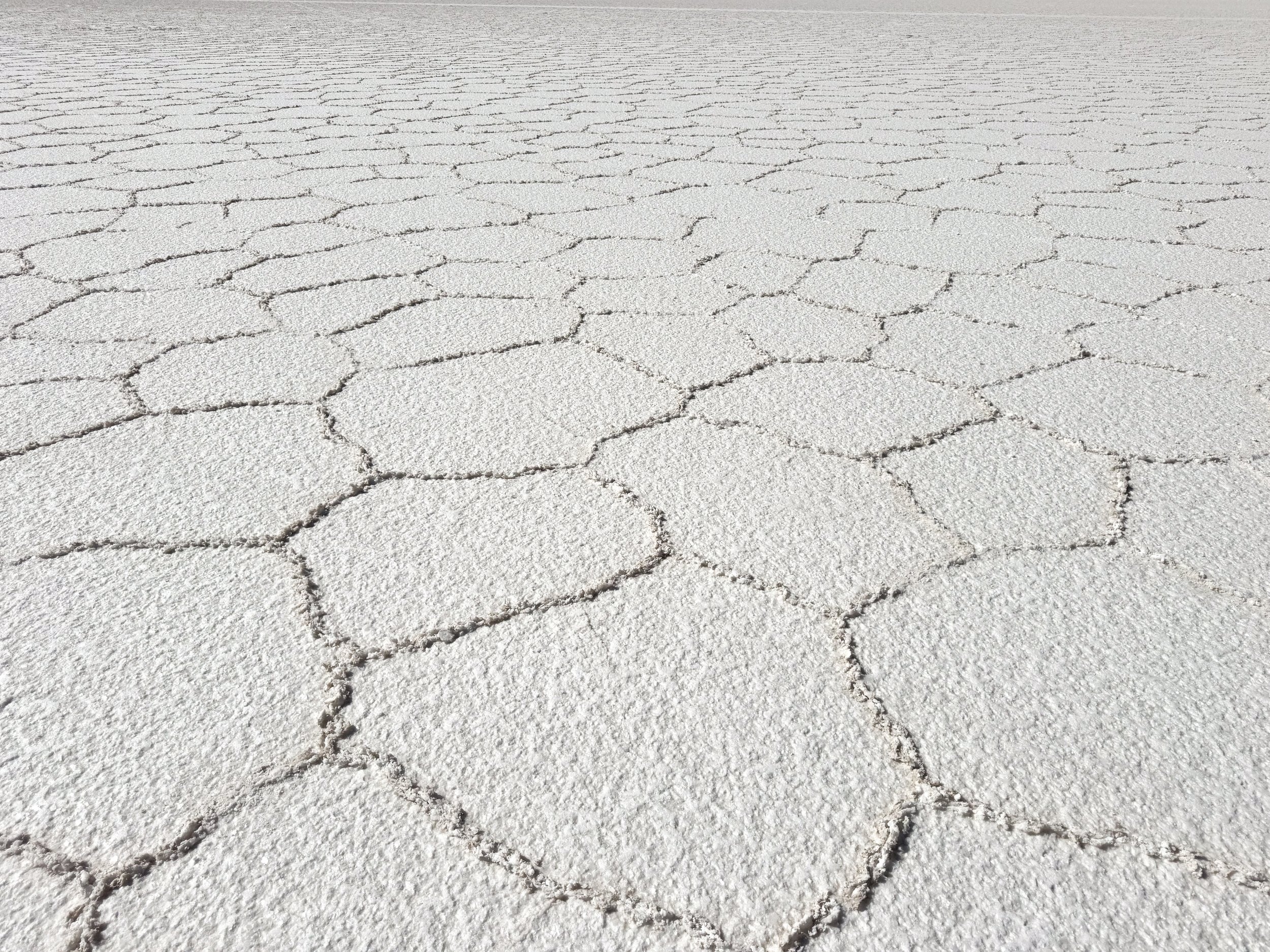
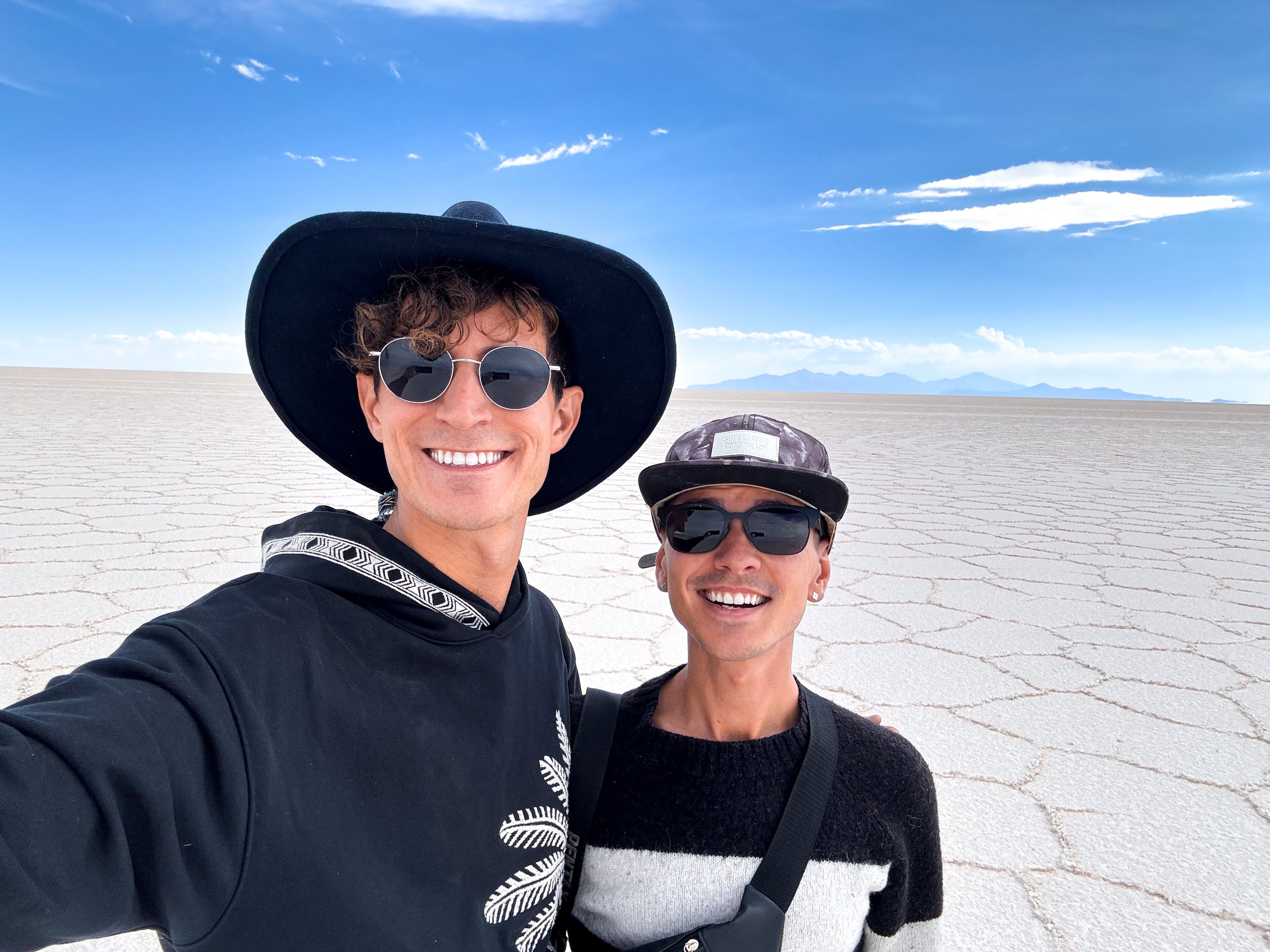
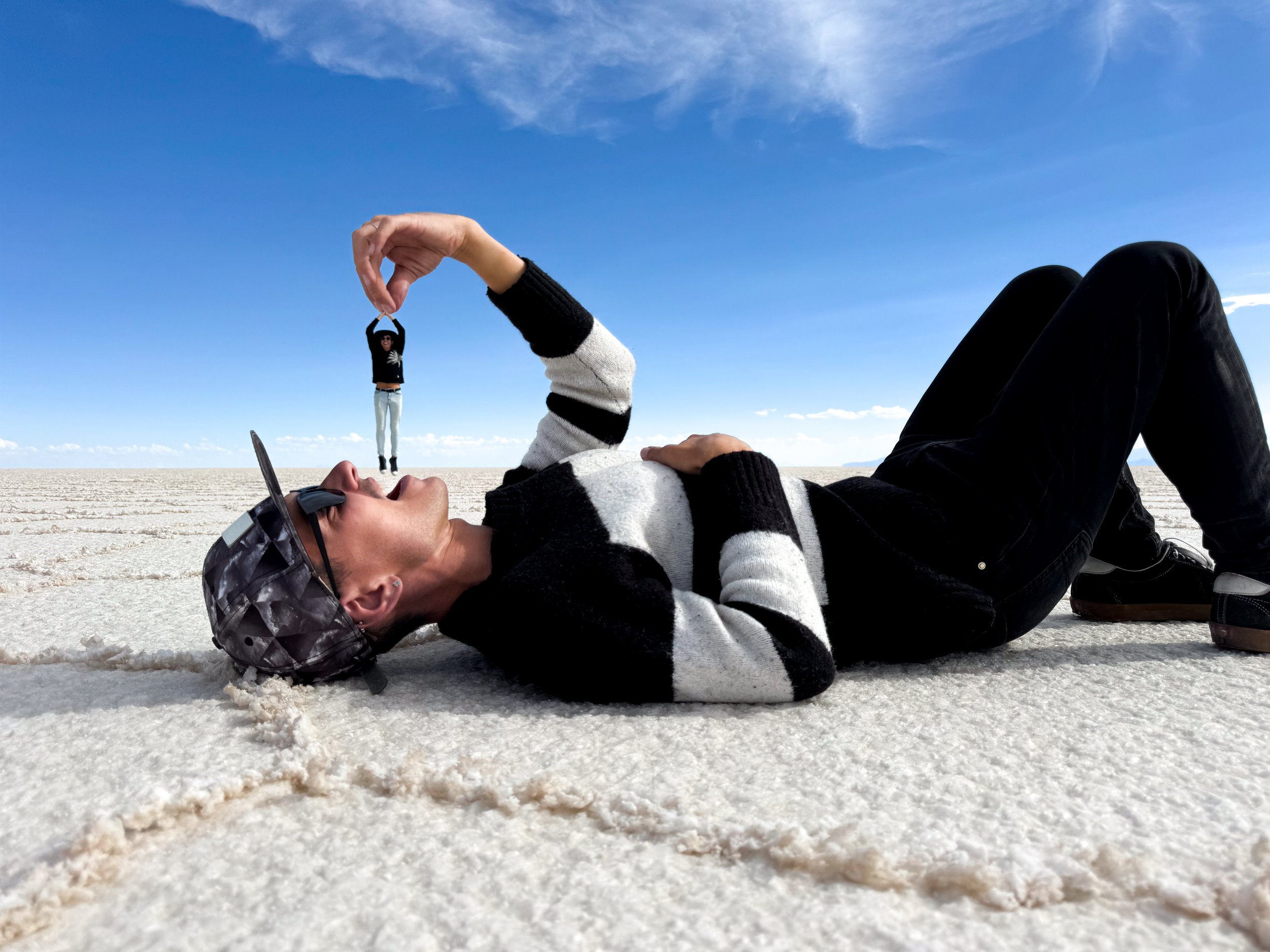
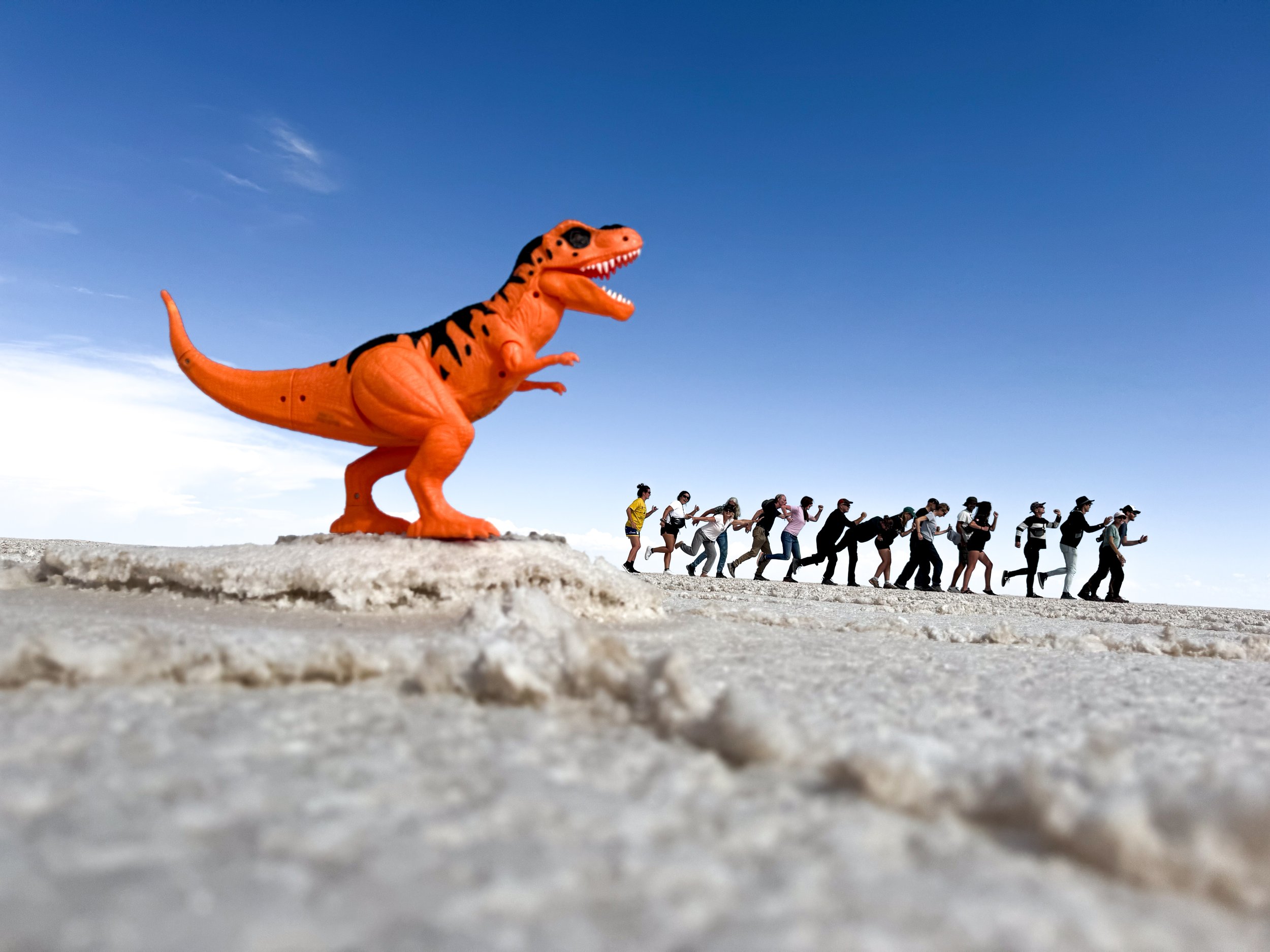
Uyuni
The Uros Islands are a series of floating islands on Lake Titicaca made from buoyant mud bricks and totora, a reedlike grass that grows in the shallows and marshes of the lake.
The Uyuni Salt Flats
The Uyuni Salt Flats are the largest salt flats on the planet in the high Andes of Bolivia. We visited during the dry season when the salt created crusty white geometric patterns across the vast landscape.
After taking an overnight bus from La Paz, we drove far into the salt flats, away from civilization, where it was eerily quiet. We looked across the landscape admiring the bright white salt contrasted against the deep blue sky with silhouettes of volcanos and mountains on the horizon. Mirages formed making it appear as if some mountains were floating. Off of our peripheral, spiraling dust devils lurked in the distance while lighting from a storm latticed from dark clouds above the Andes.
Due to the vast flatness, one of the big draws is to take forced perspective photos! Our guide took multiple of us and our group.
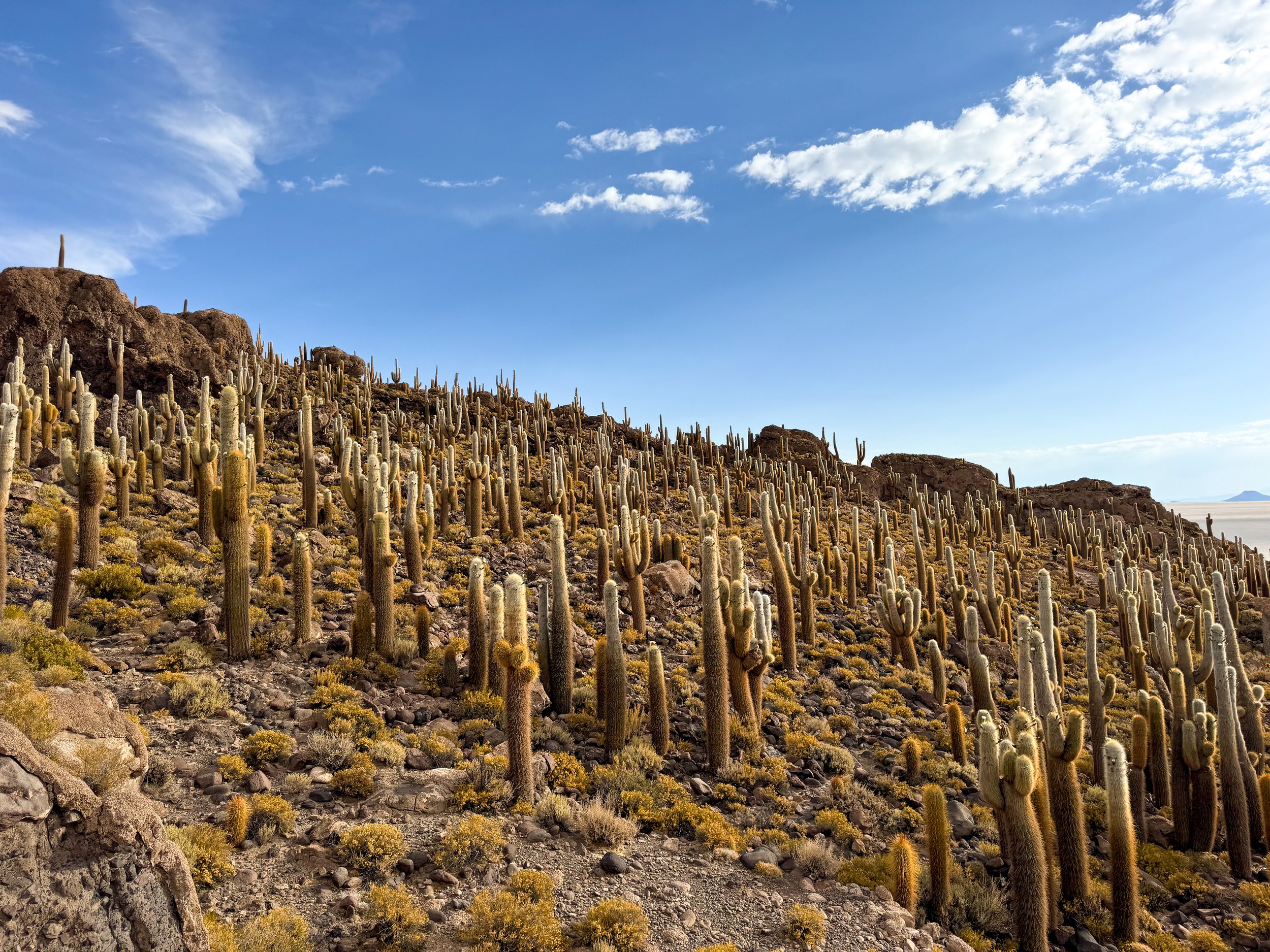
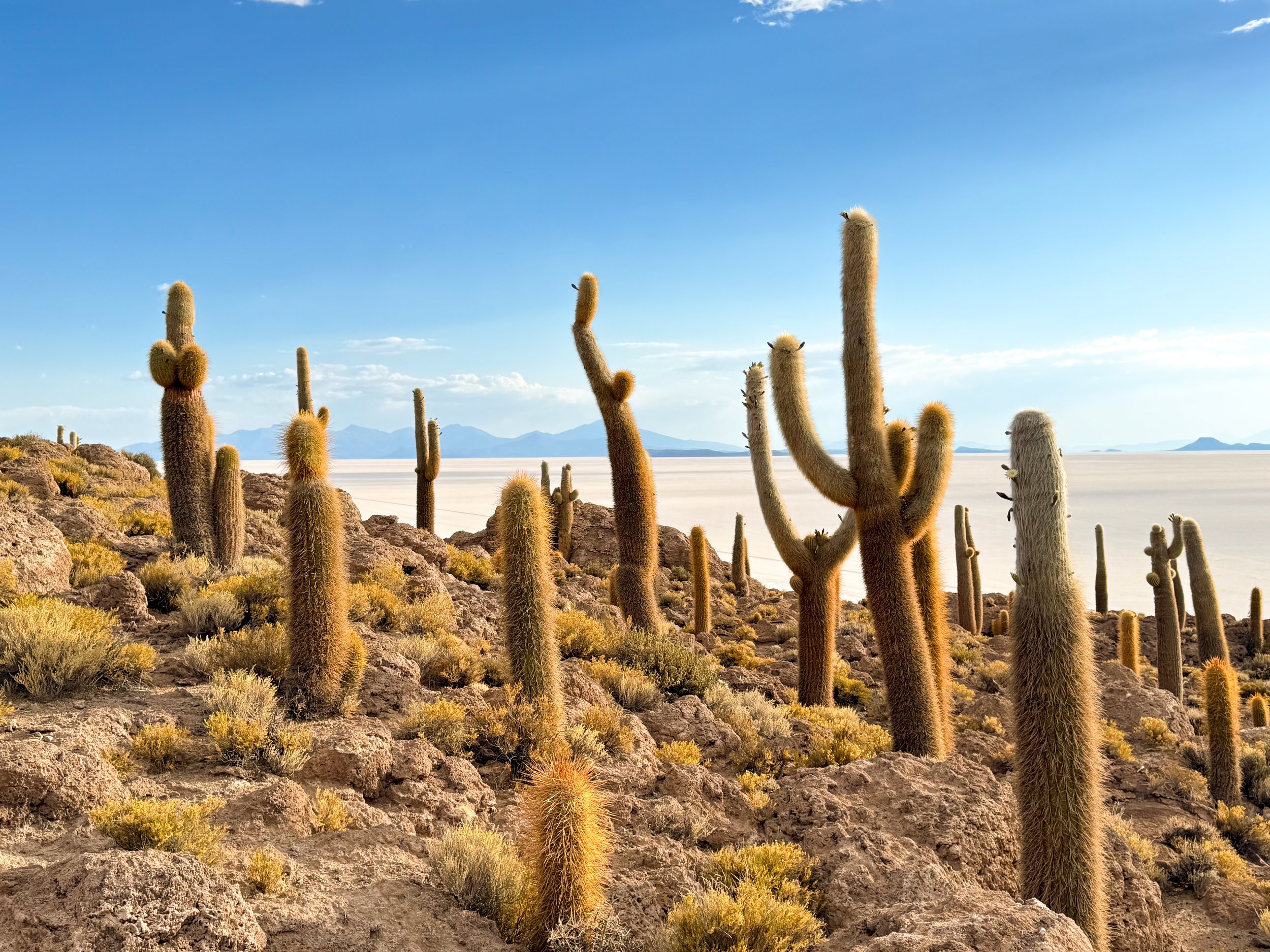
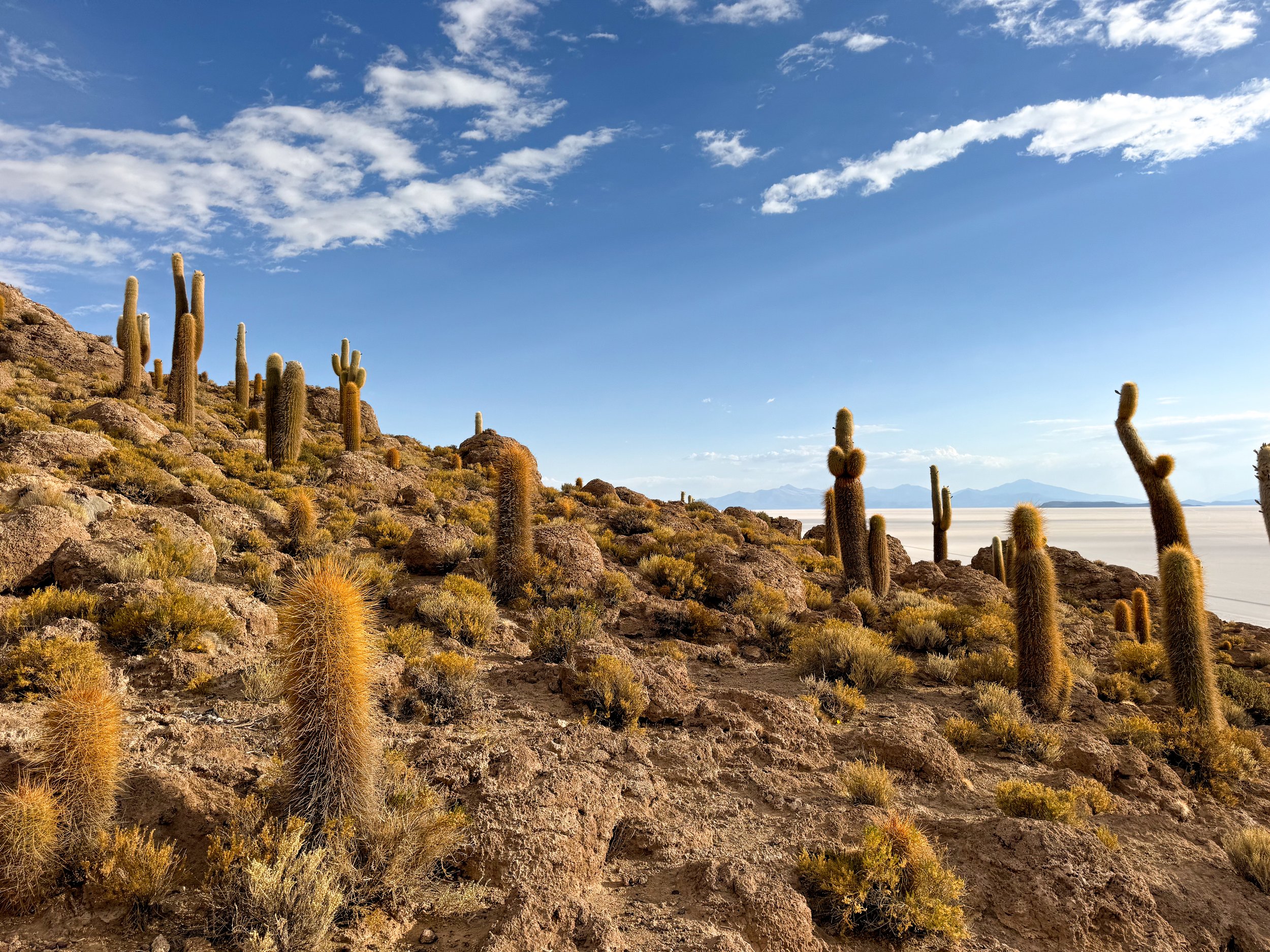

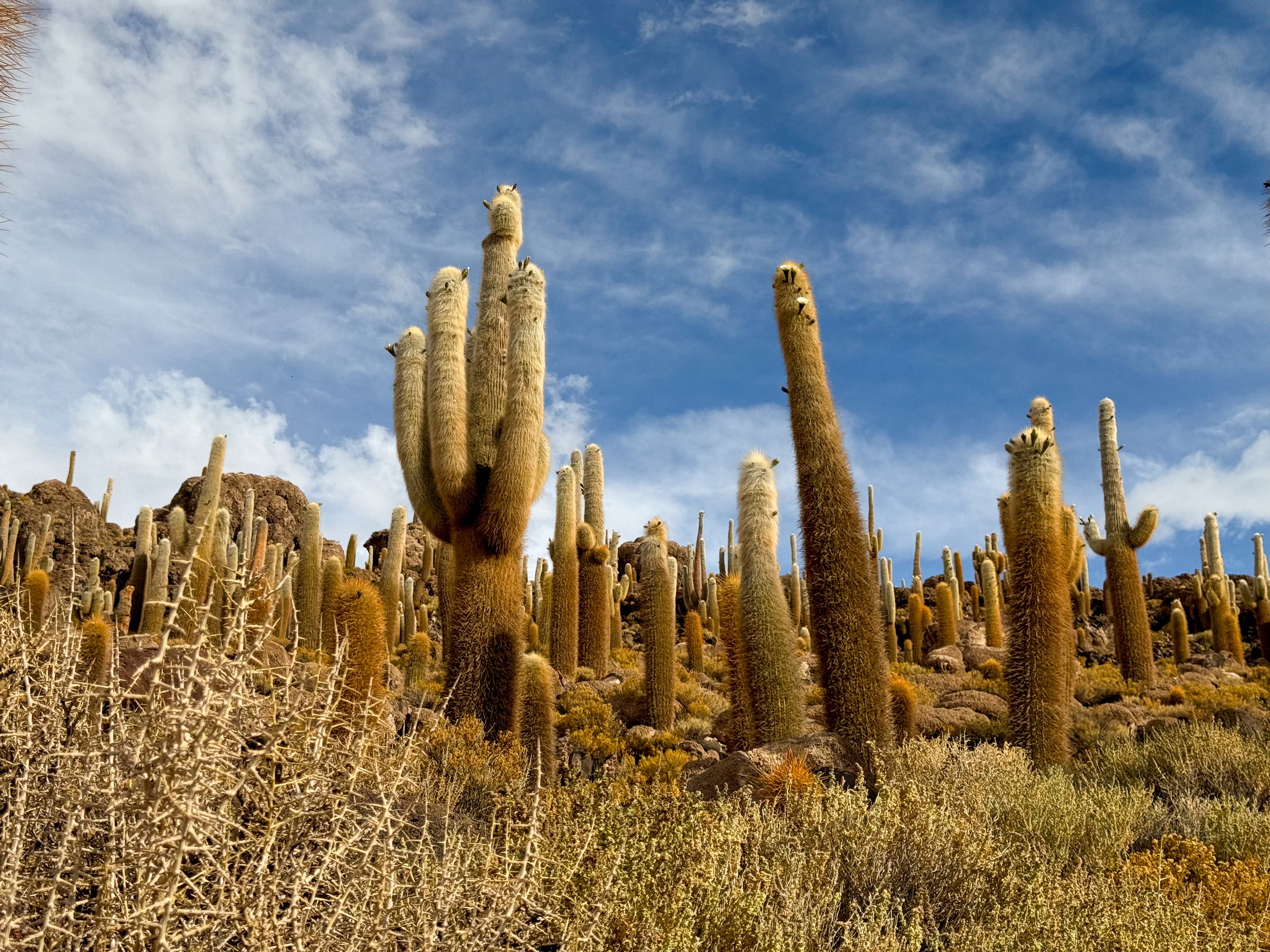
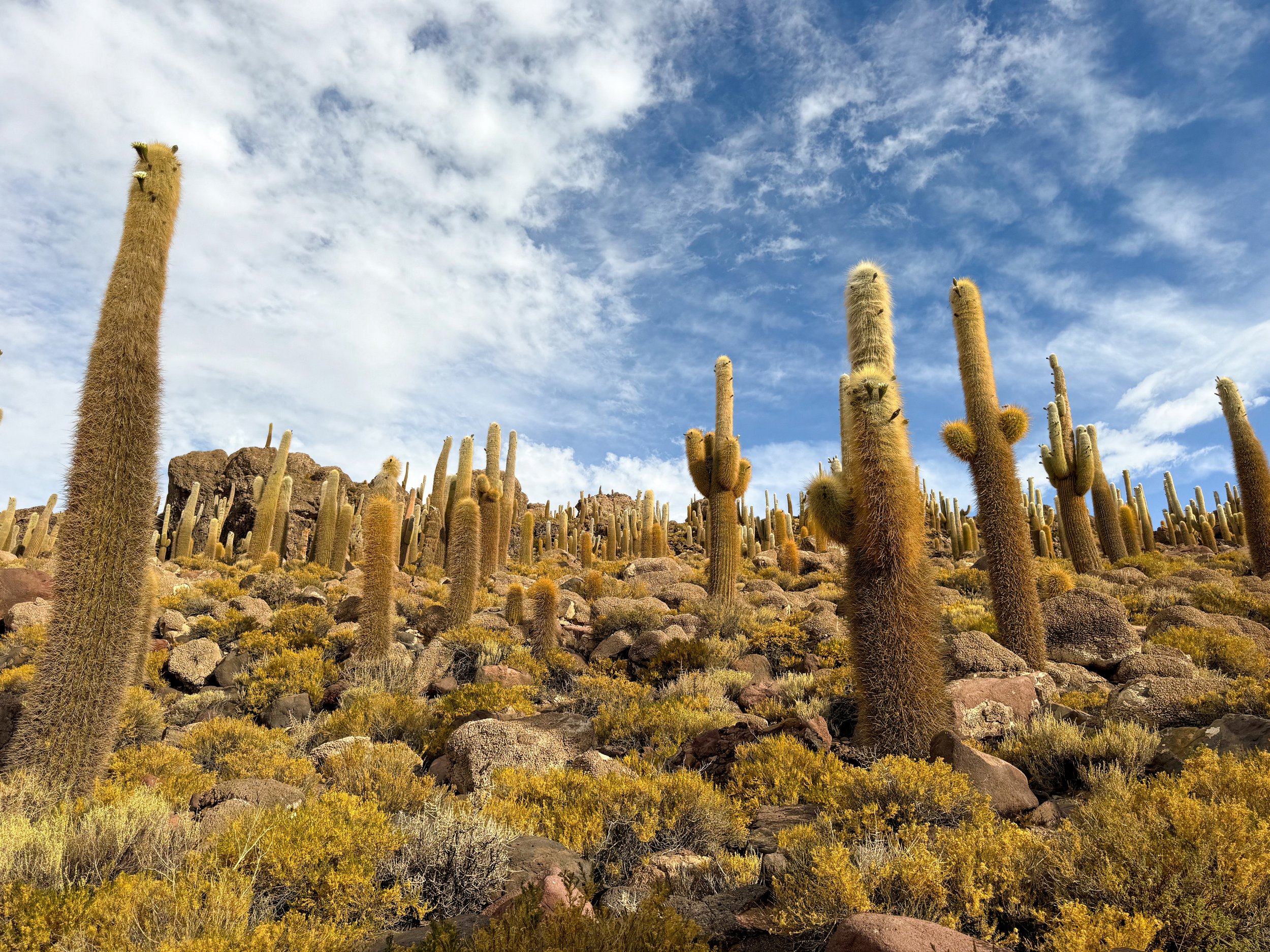
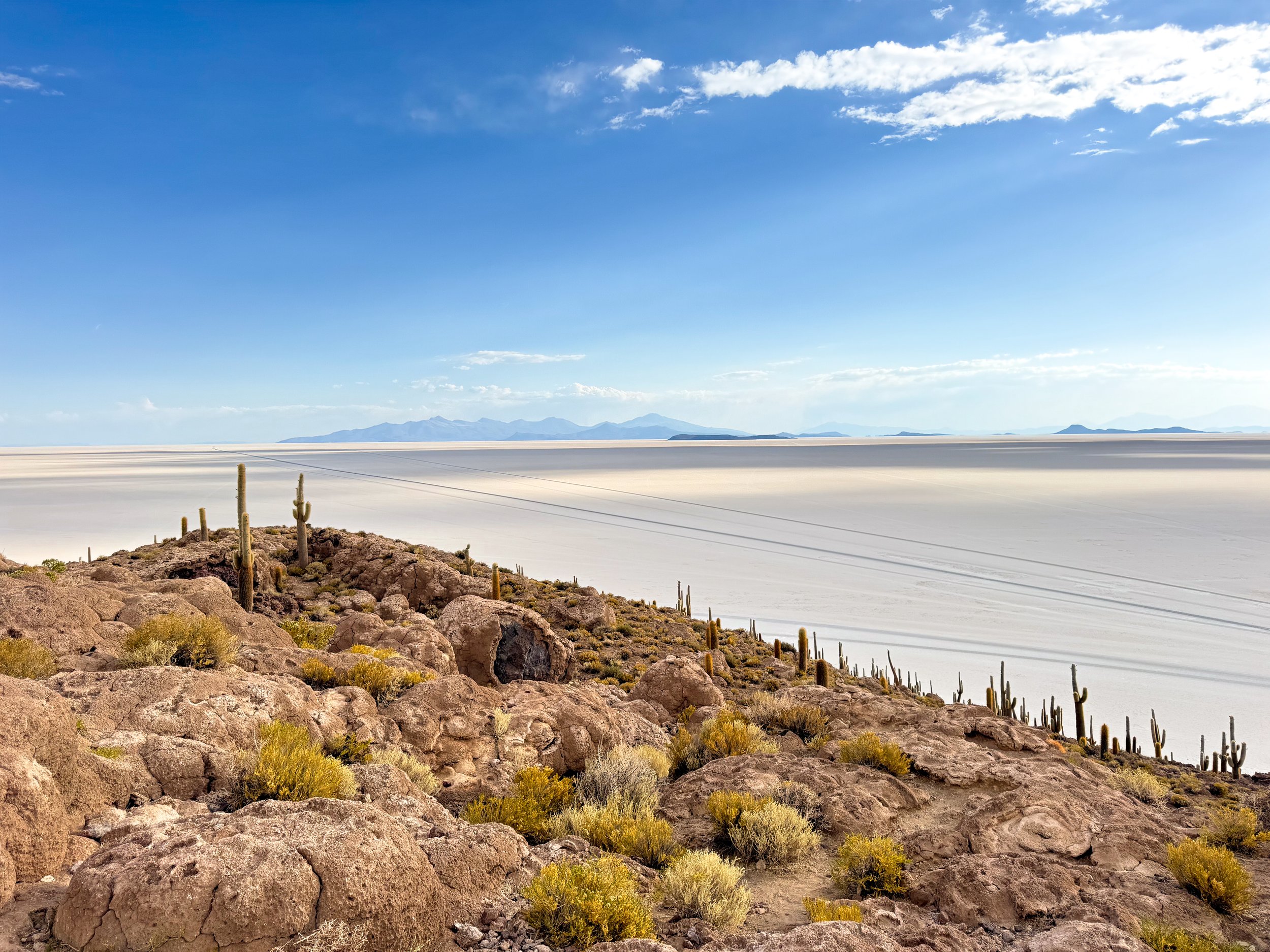
Isla Incahuasi
Isla Incahuasi is a volcanic island in the middle of the Uyuni Salt Flats covered in cacti, fossilized coral and stromatolites from when the area was a saltwater sea. A trail across the island leads to its summit with panoramic views of the salt flats and mountains in the distance. We visited in the southern spring (November) when many of the cacti were blossoming with white tuft-like flowers. Some of the cacti are over 1,000 years old and can live up to 2,500 years.
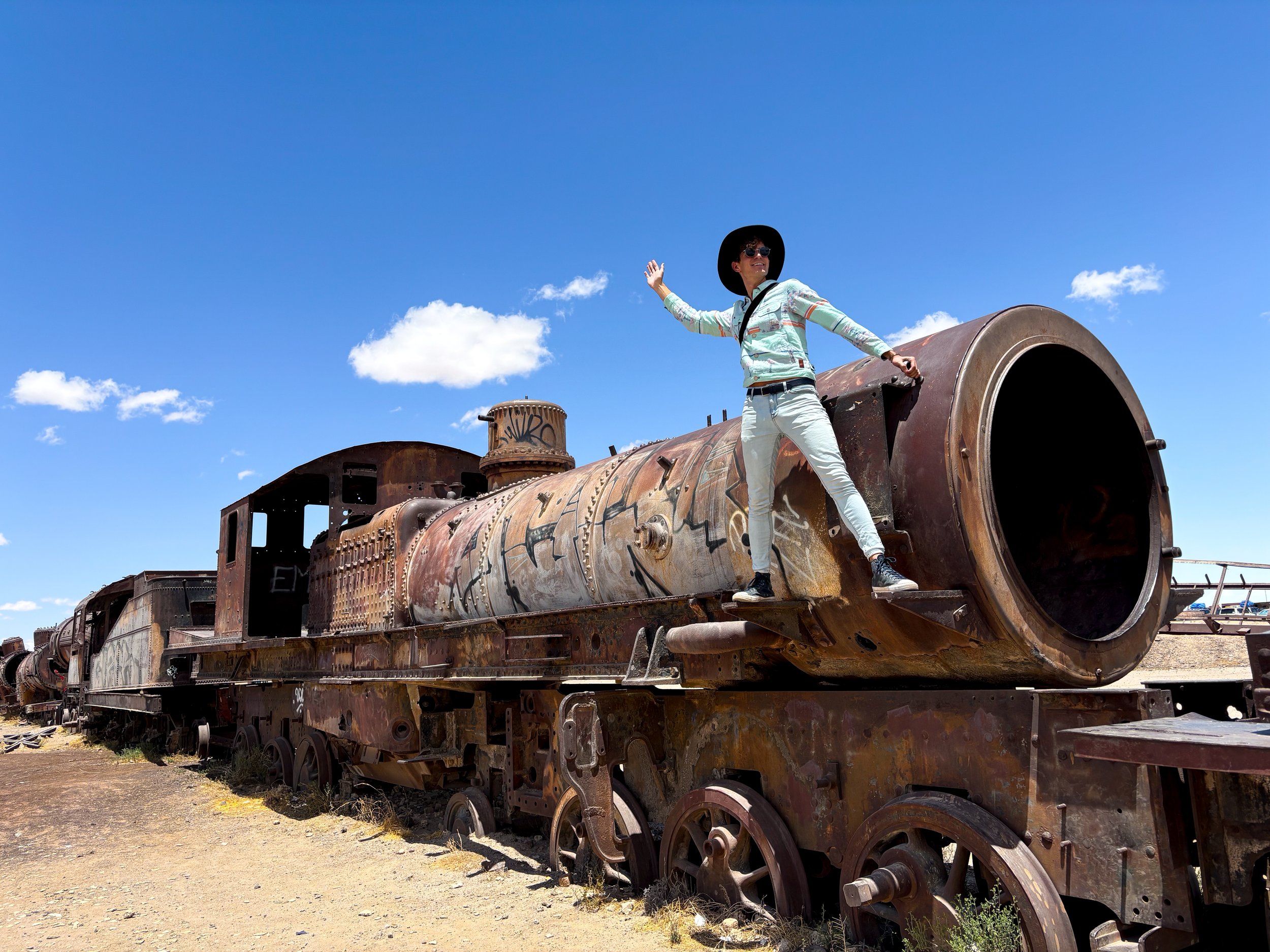
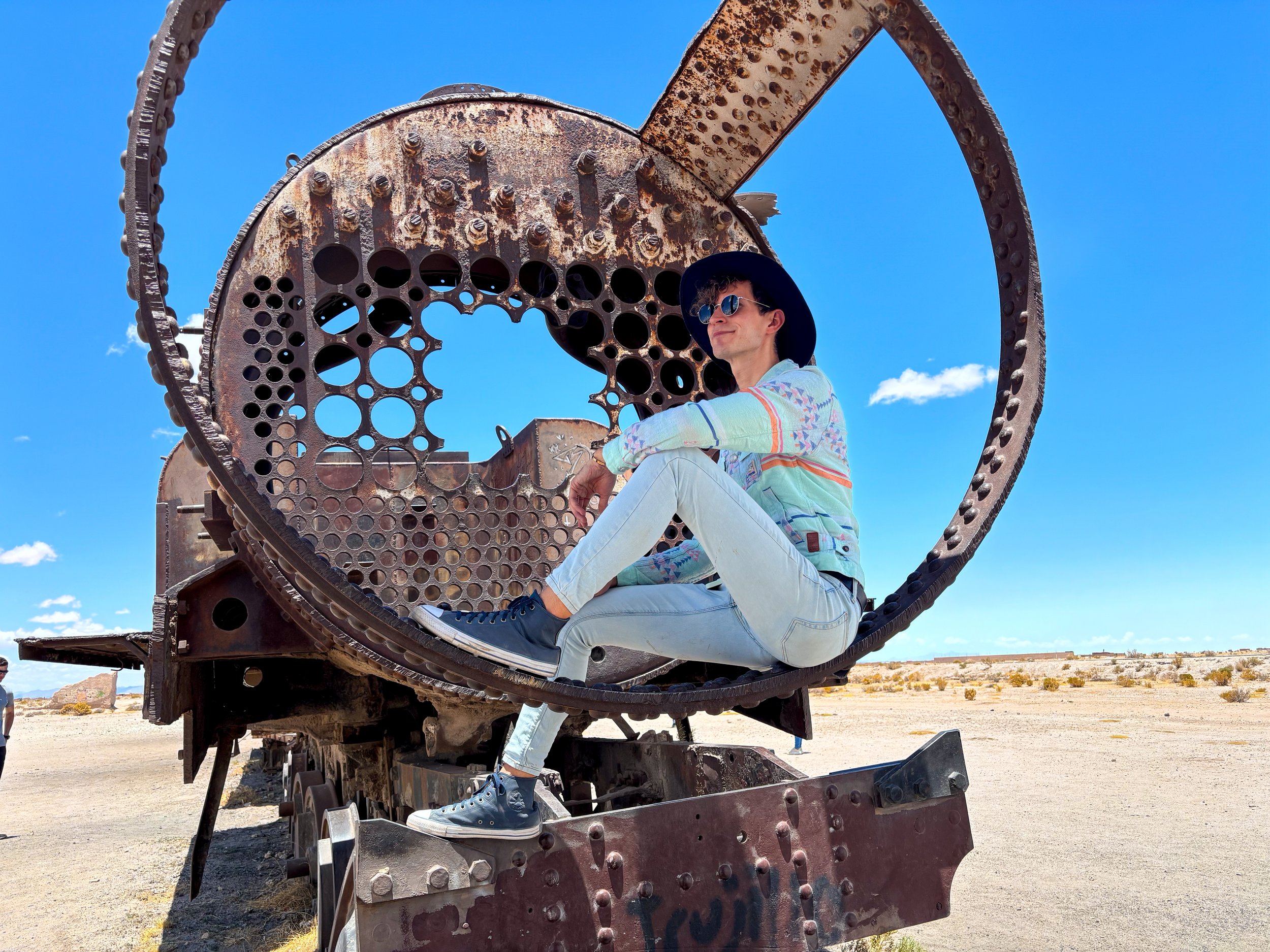
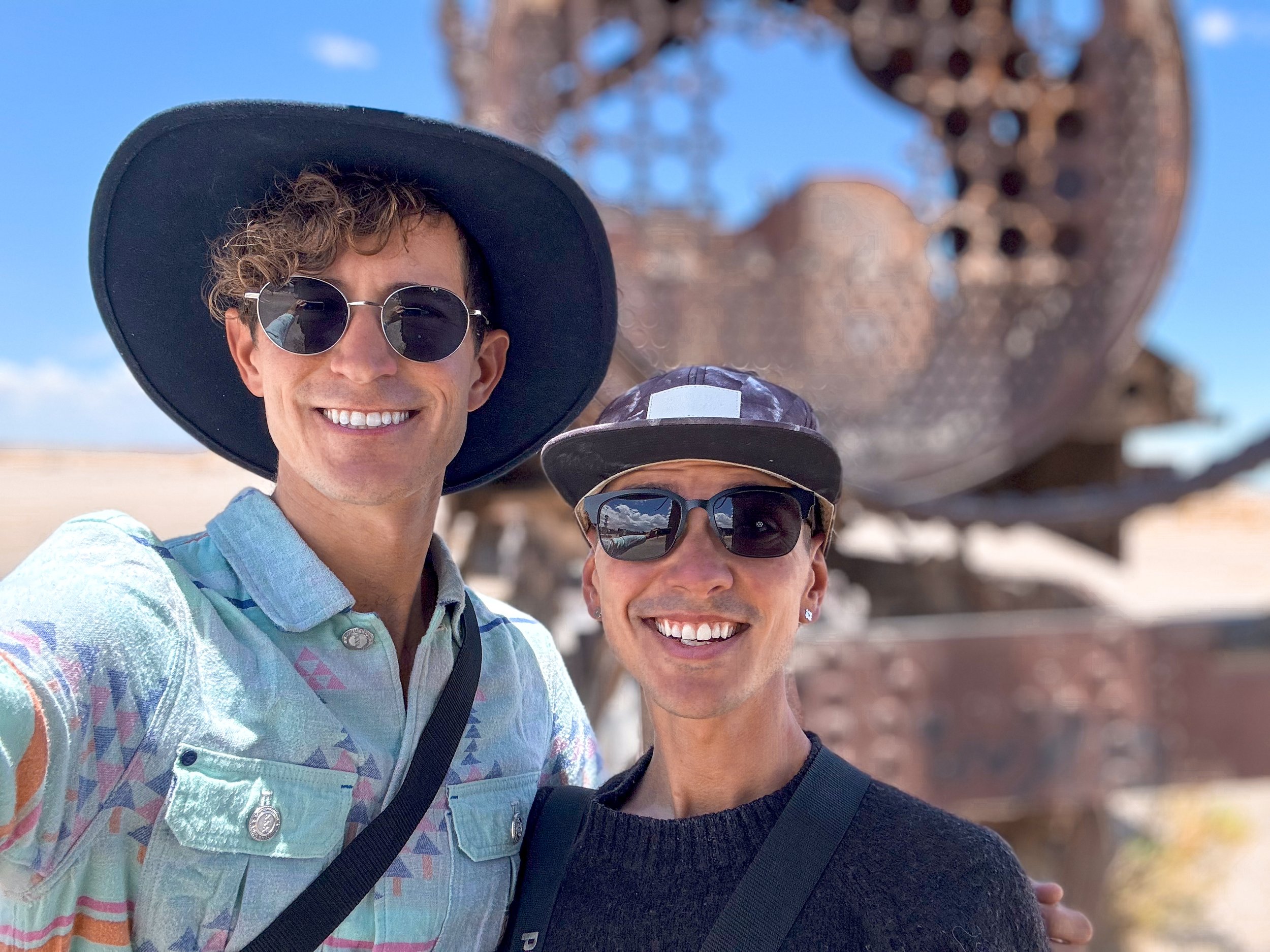
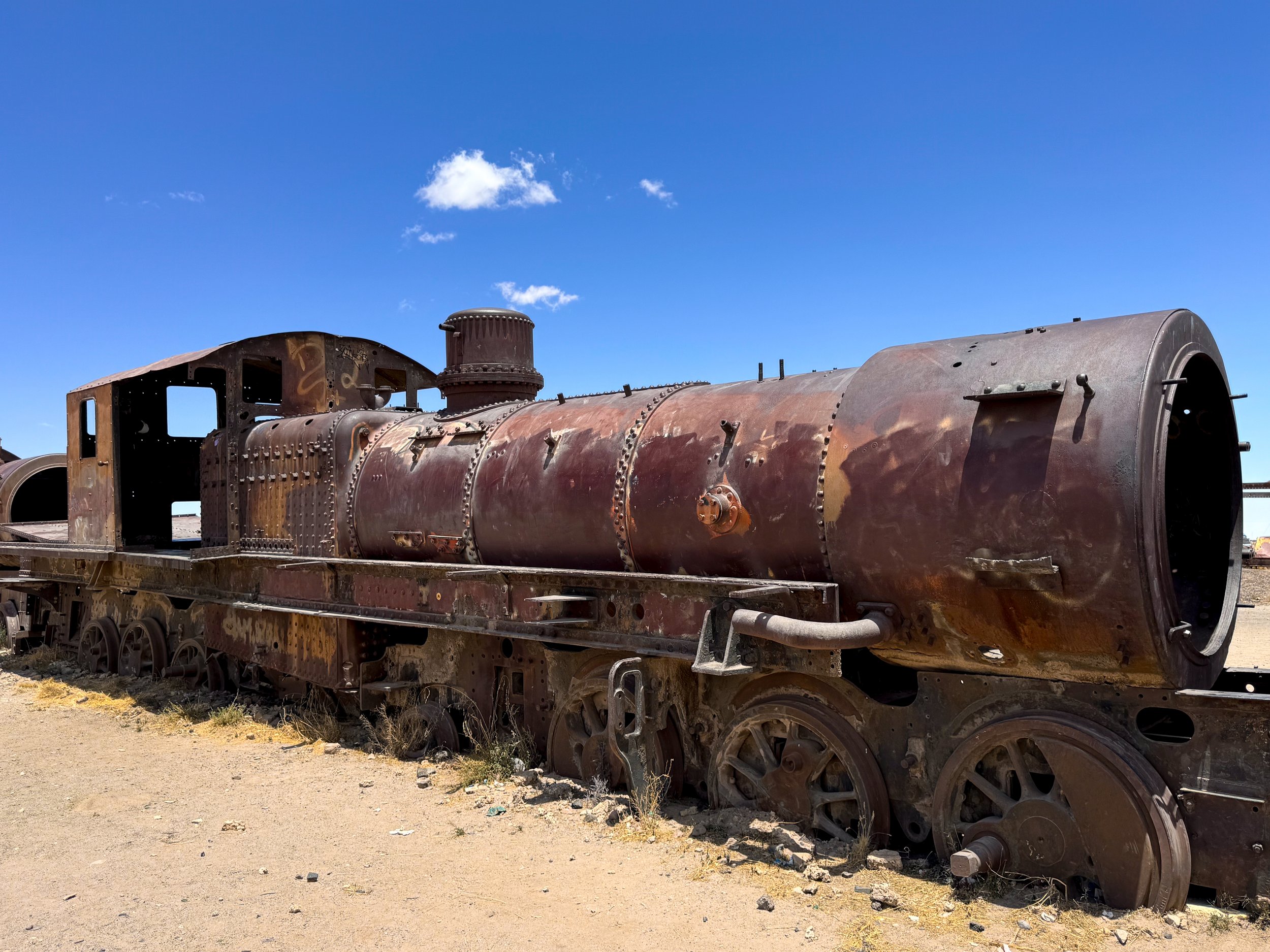
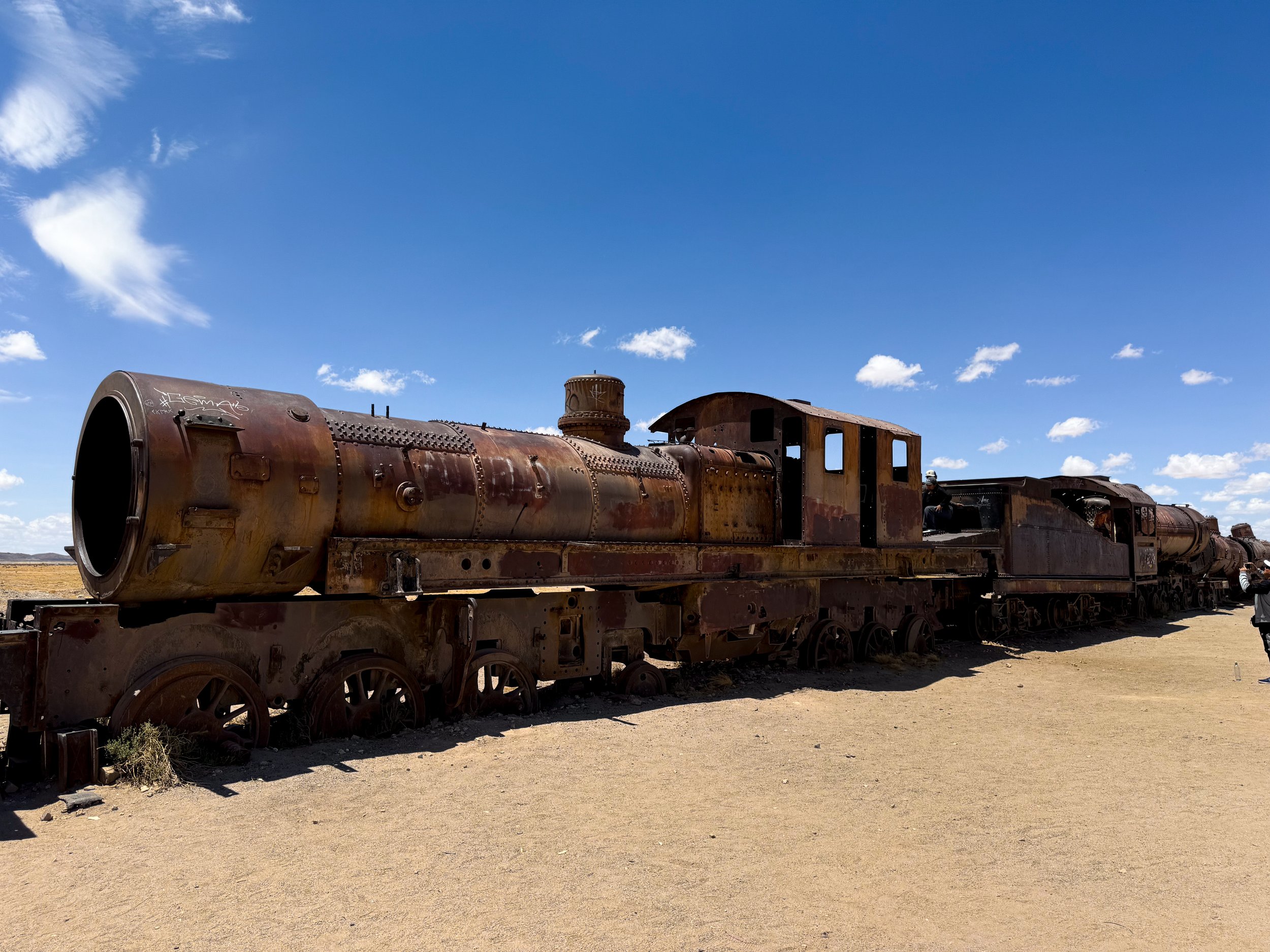
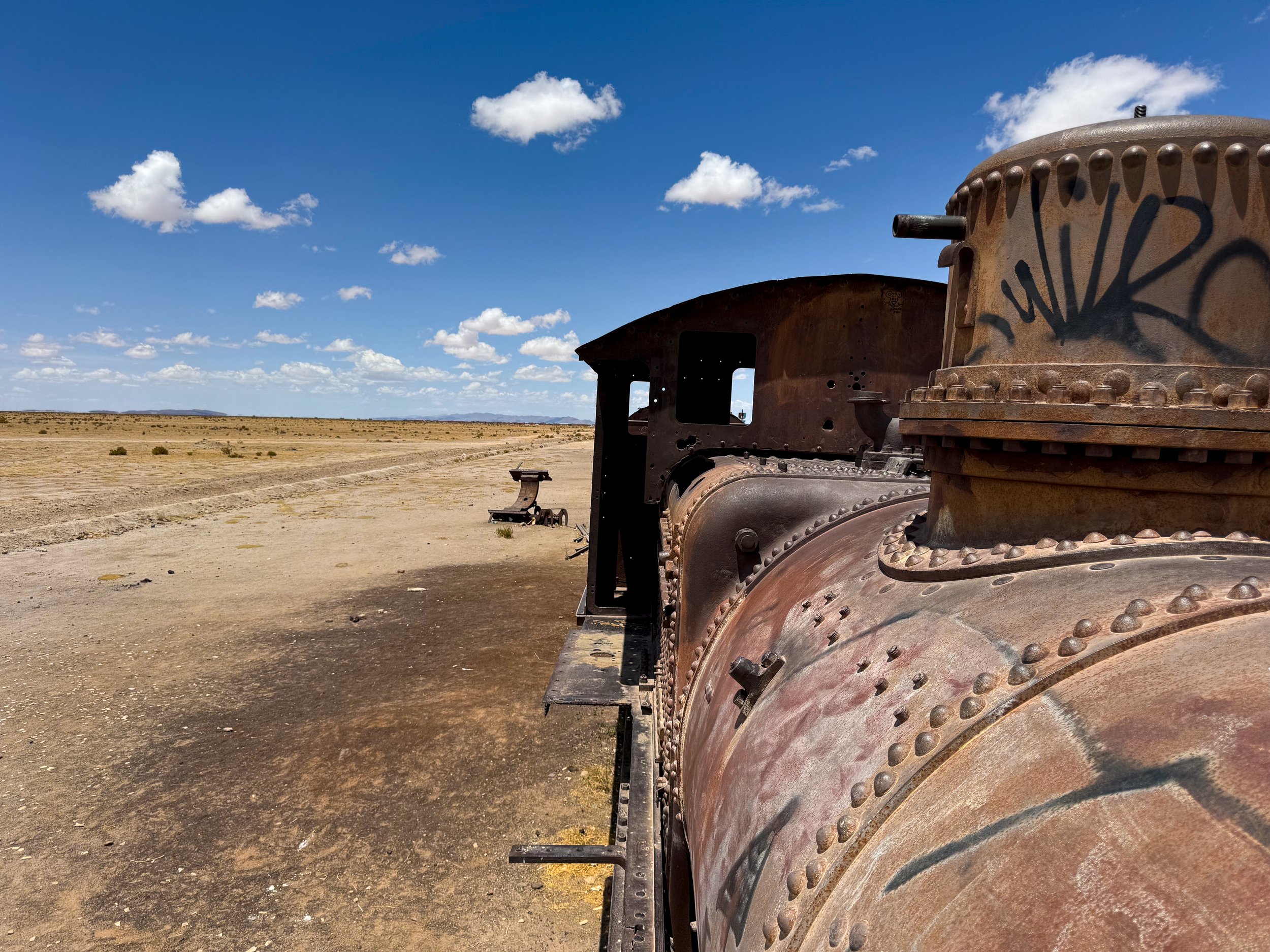
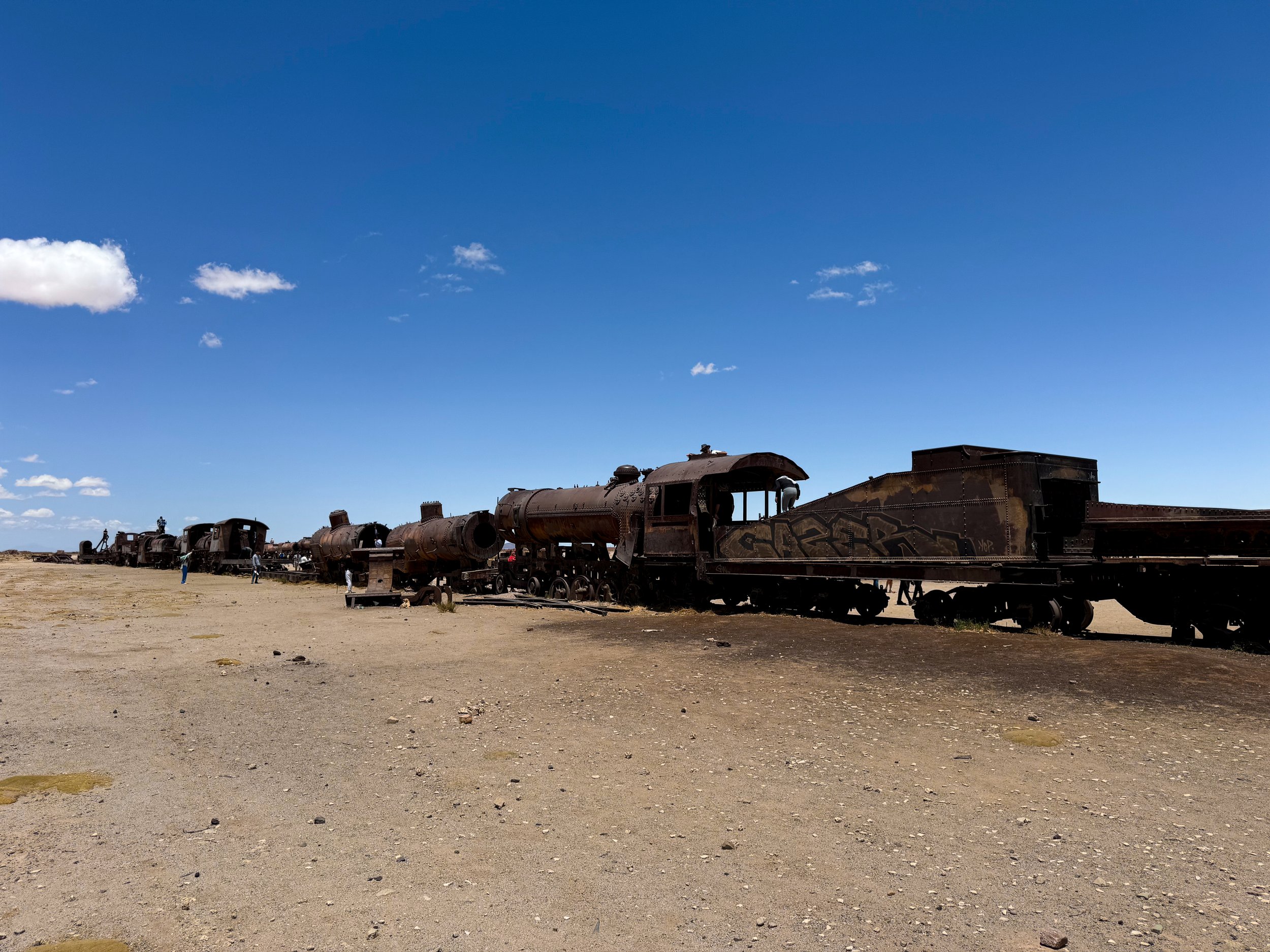
The Train Graveyard
The Train Graveyard of rusted out track vintage train engines and cars. While here, we climbed on and inside the relics, snapping a few photos for the gram. It’s typically the first stop on any Uyuni tour.
(Off) Road Trip
After Uyuni, we began our road trip across the Bolivian Desert down a bumpy dirt road past golden brown craggily fields with salt deposits, short dry shrubs and the cutest wild vicuñas. A cloud of dust followed us while no other cars were to be seen for many miles emphasizing the remoteness of the landscape. Reddish brown volcanic mountain ranges carry across the horizon reaching towards the blue sky painted with wispy white clouds. We continued for the next two days, visiting volcanic lookouts, colorful lagoons, desert rock formations and geothermal areas.
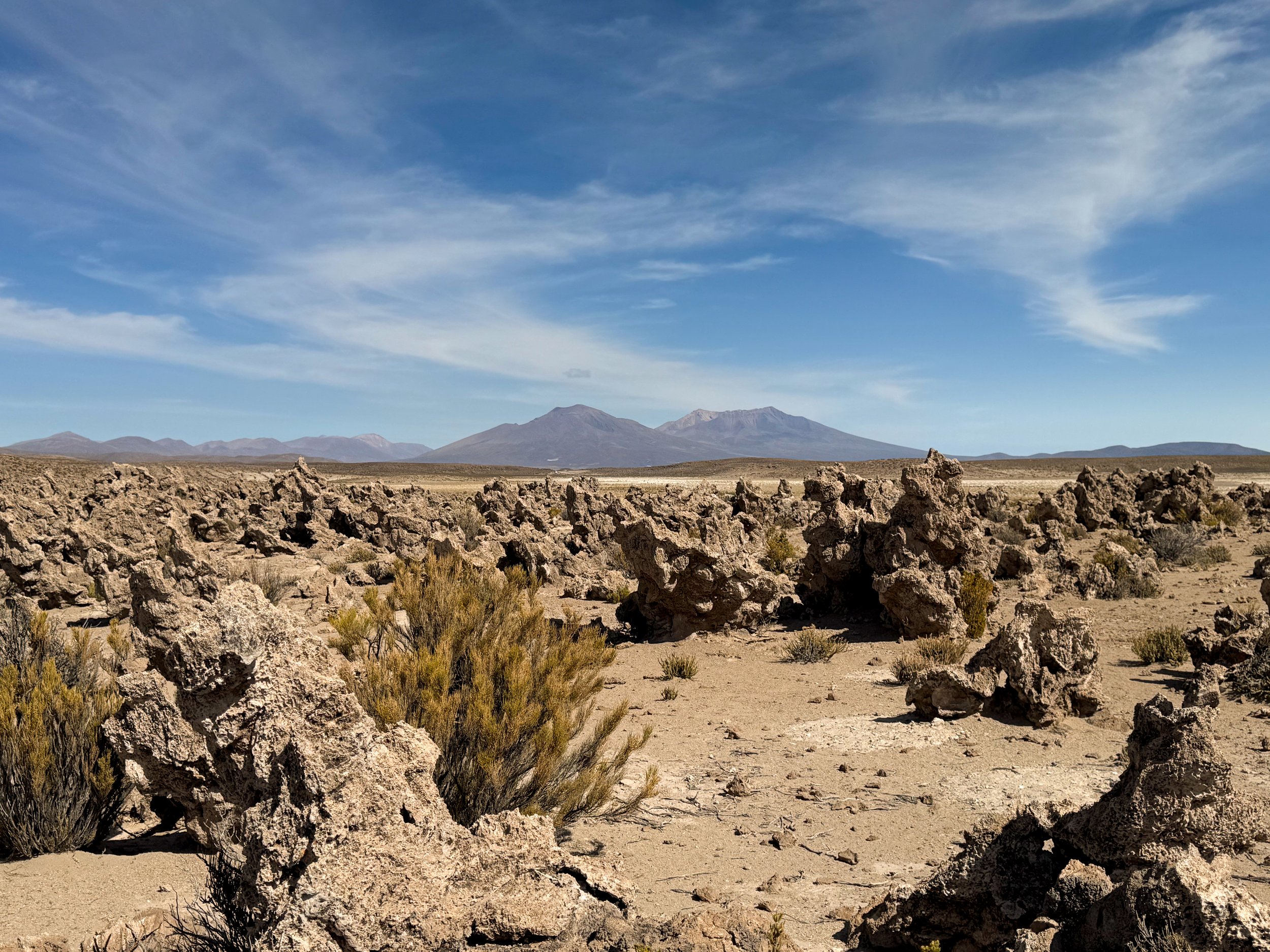
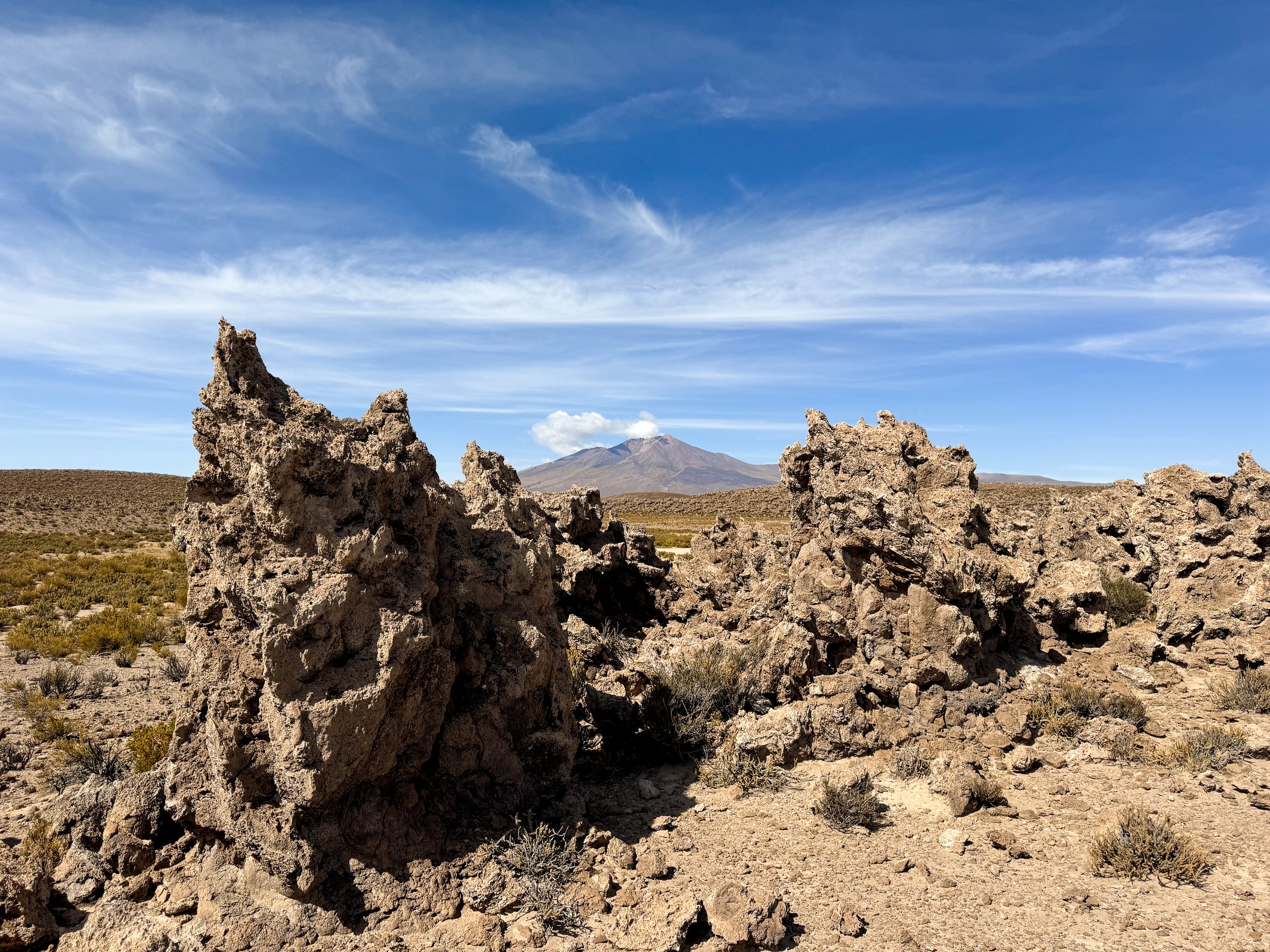
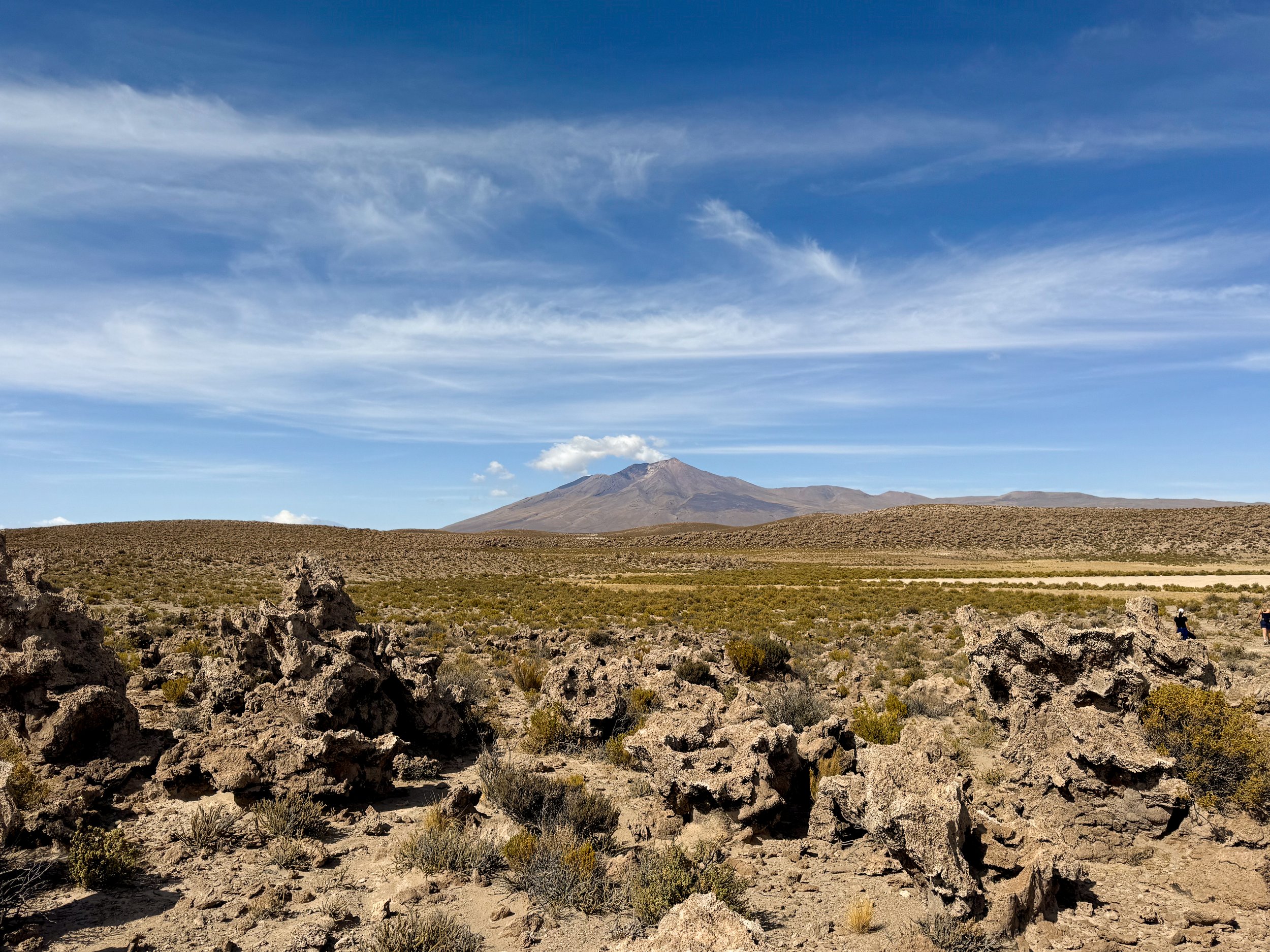
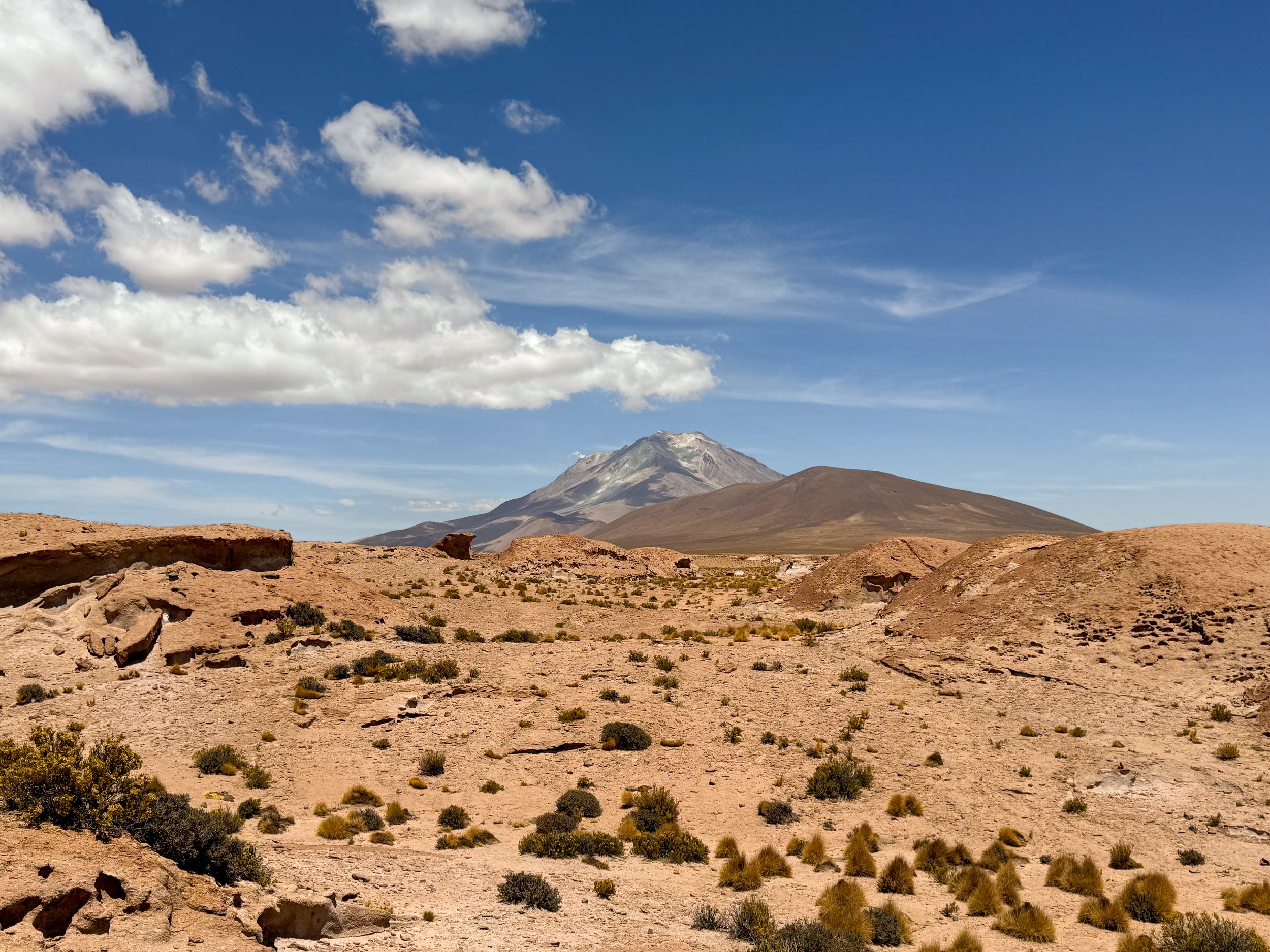
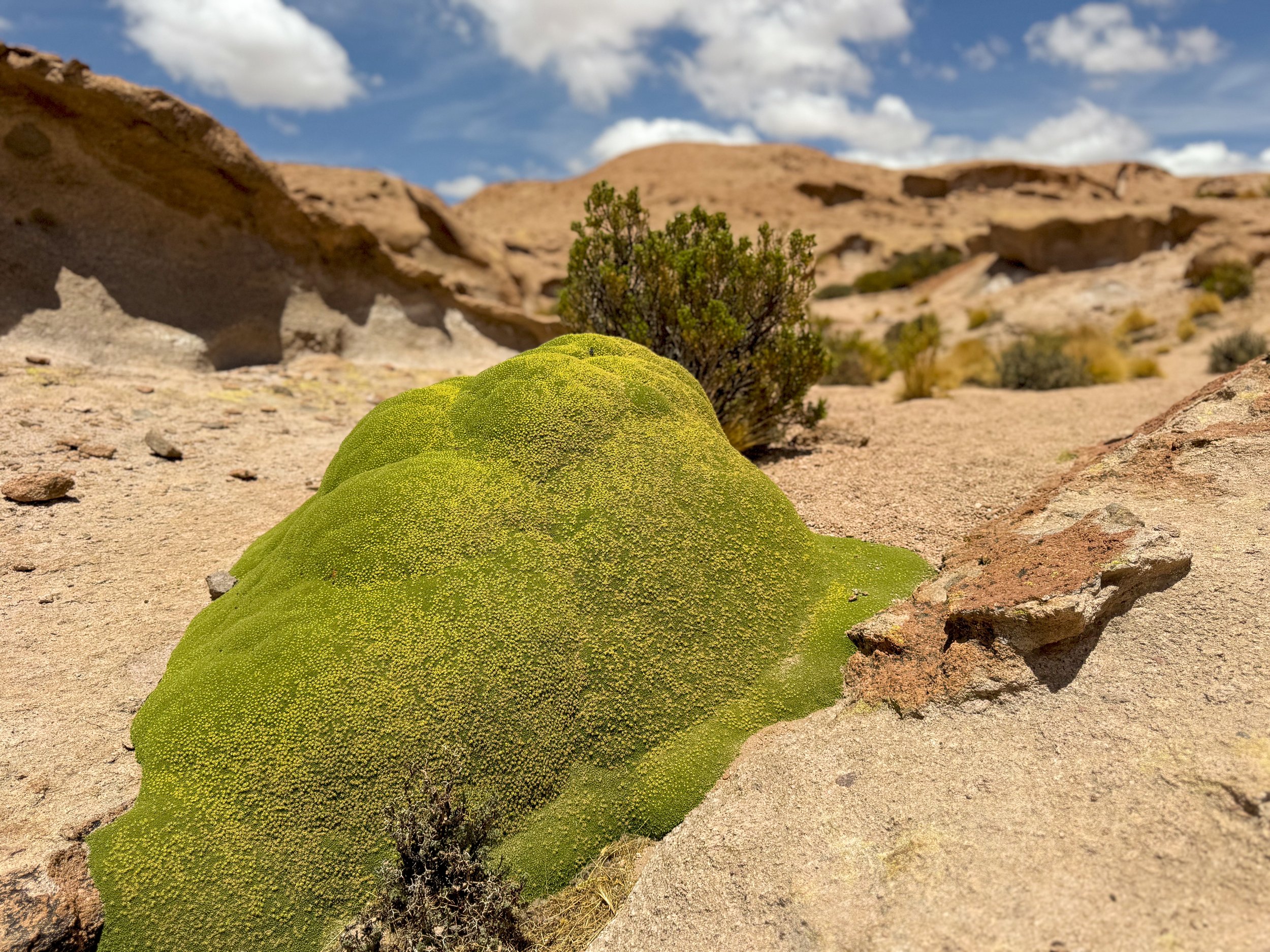
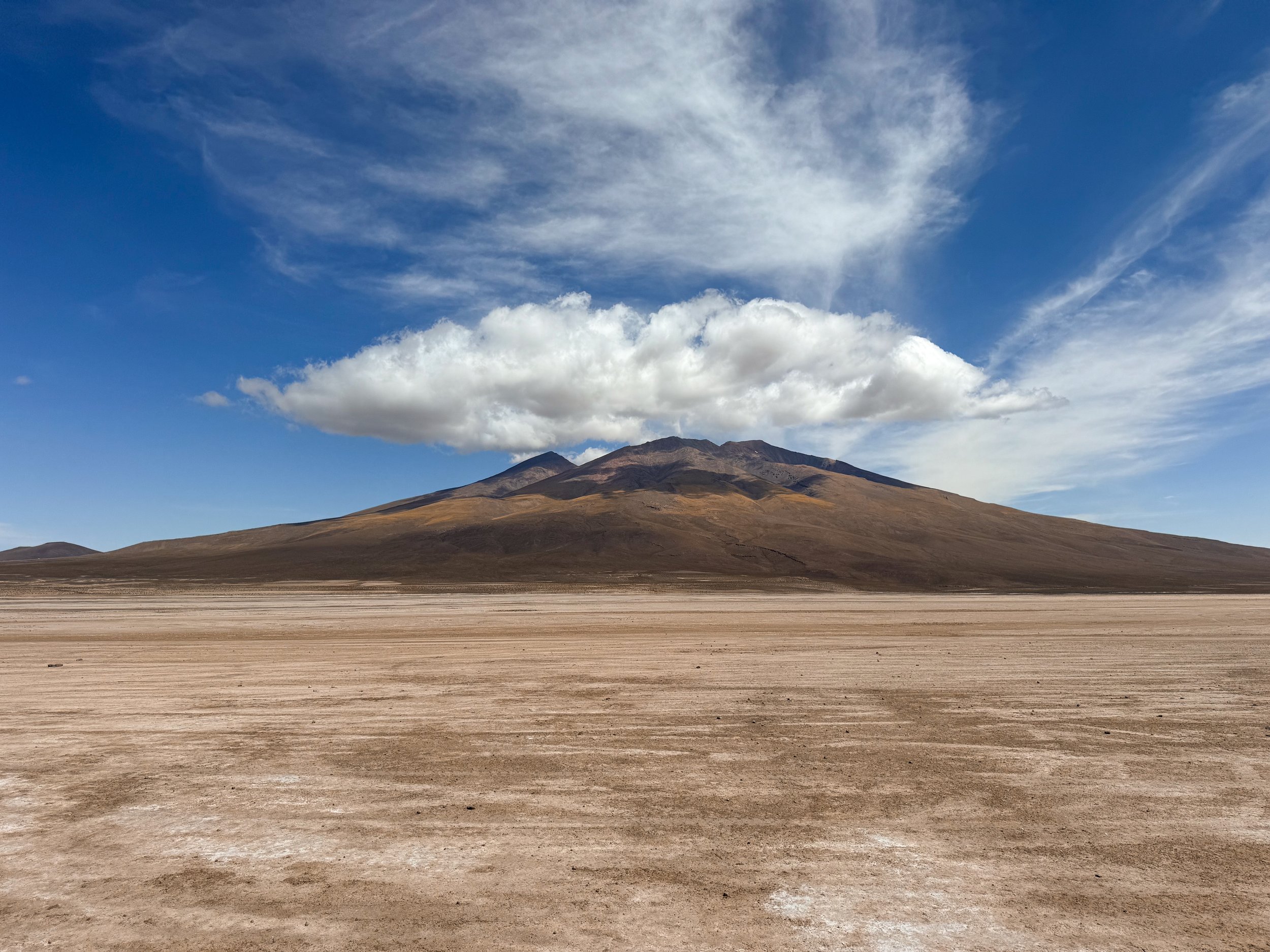
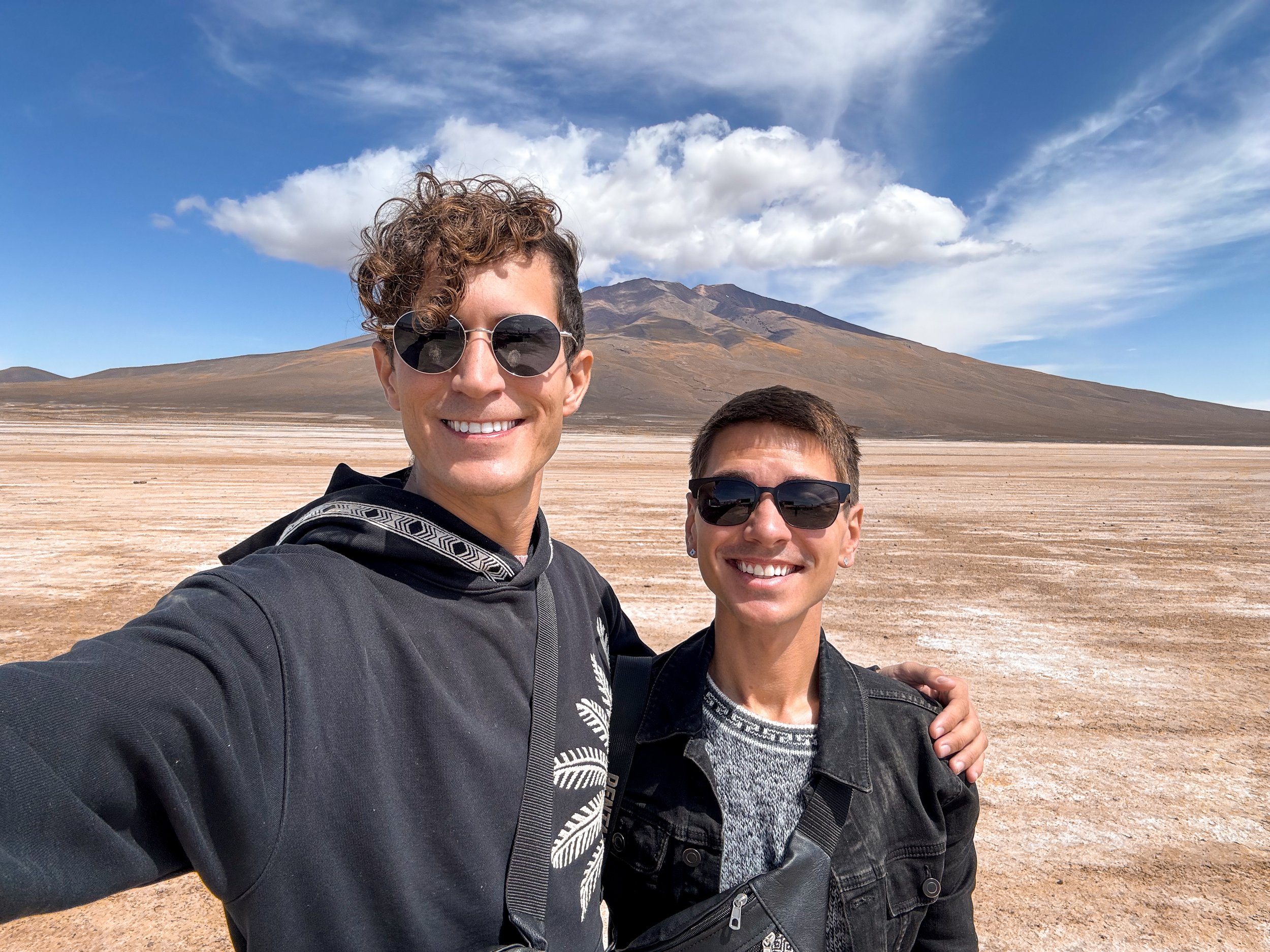
Volcanos
The Coral Garden. Our first stop brought us to an ancient coral garden. The landscape is covered in fossilized coral formations with jagged edges and tubular structures pushed up from the sea to 3,700 meters by the Andes over the past 11 million years. No longer home to marine life, small lizards, doves and mice inhabit the corals surrounded by prickly desert shrubs.
Chiguana Salt Flat. Our second stop brought us to the Chiguana Salt Flat surrounded by dozens of volcanos along the Bolivia/Chile boarder. We continued through extremely rugged and bumpy off roads across the desert while admiring the volcanic landscape as we slowly climbed in altitude.
Ollagüe Volcano Viewpoint. At 4,200 meters, we stopped to look over the volcanic landscape and Bolivia’s only semi-active volcano, Ollagüe Volcano. We walked along ancient lava flows and past nodules of vibrant green moss to the lookout. The caldera of the volcano is colored greenish yellow by sulphur while a cloud of steam steadily releases from it. The view point had a restroom, cafe and small shop. We enjoyed a coca tea and bought coca beer, coca chocolate and roasted snacks.
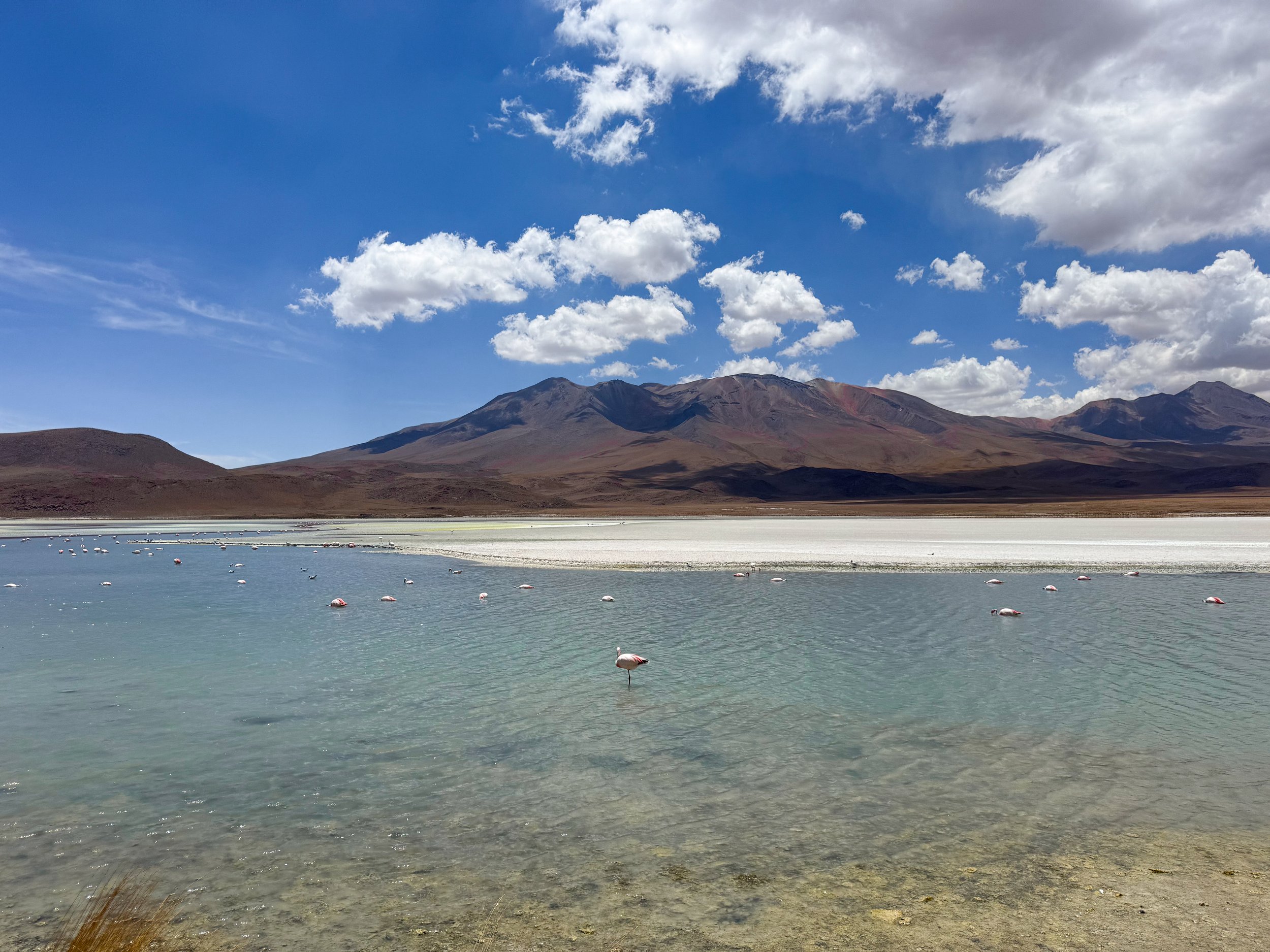
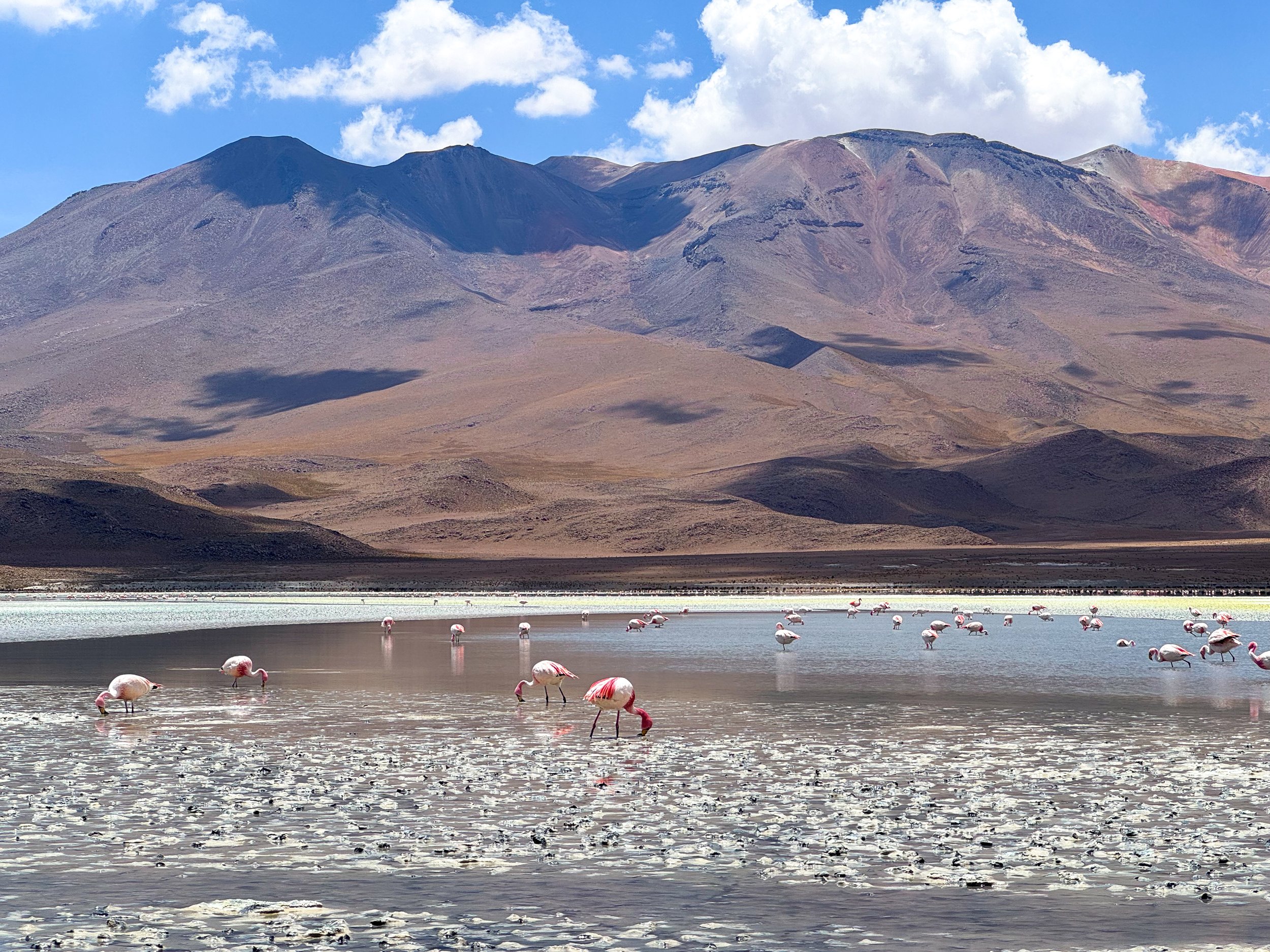
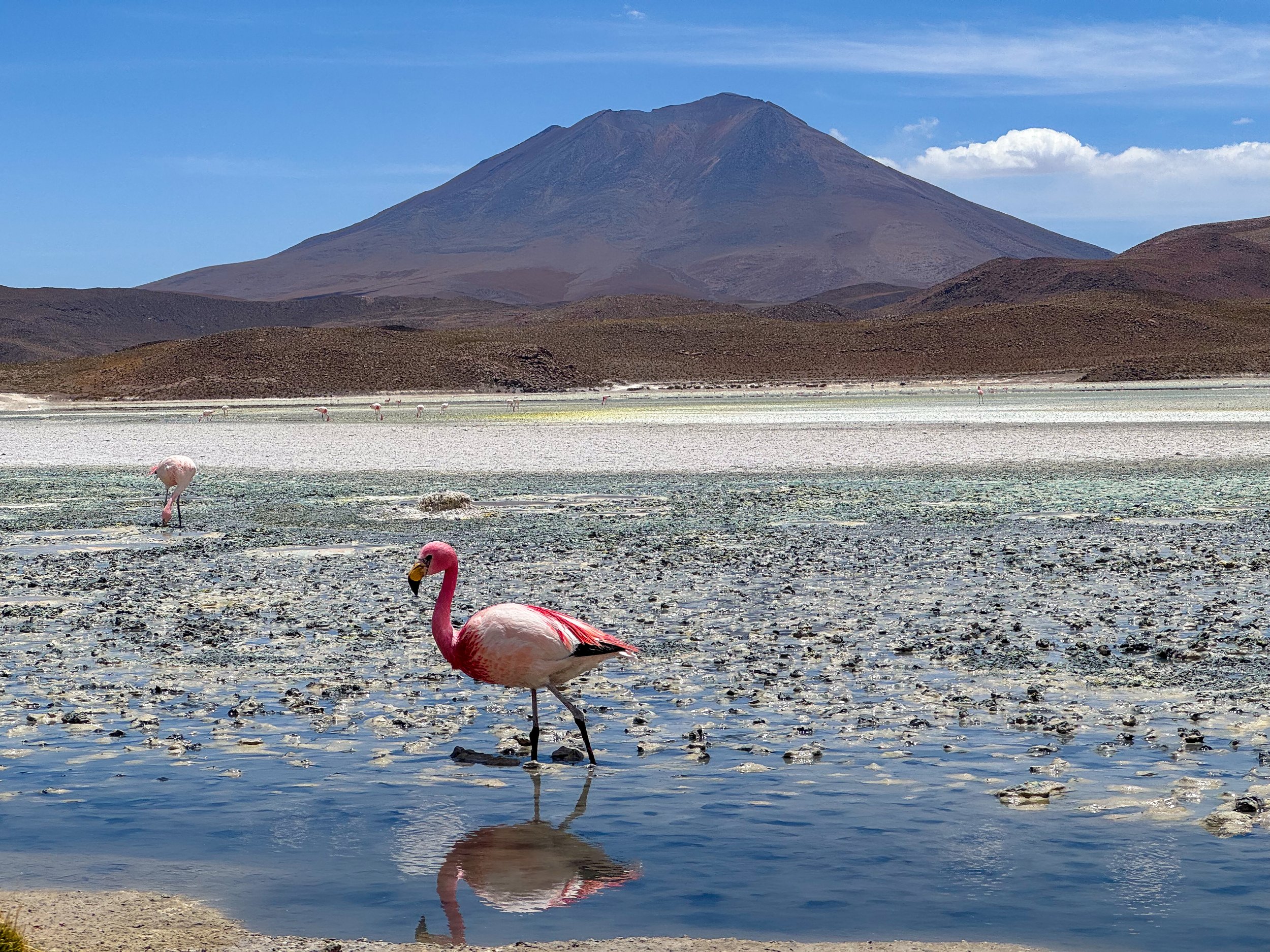
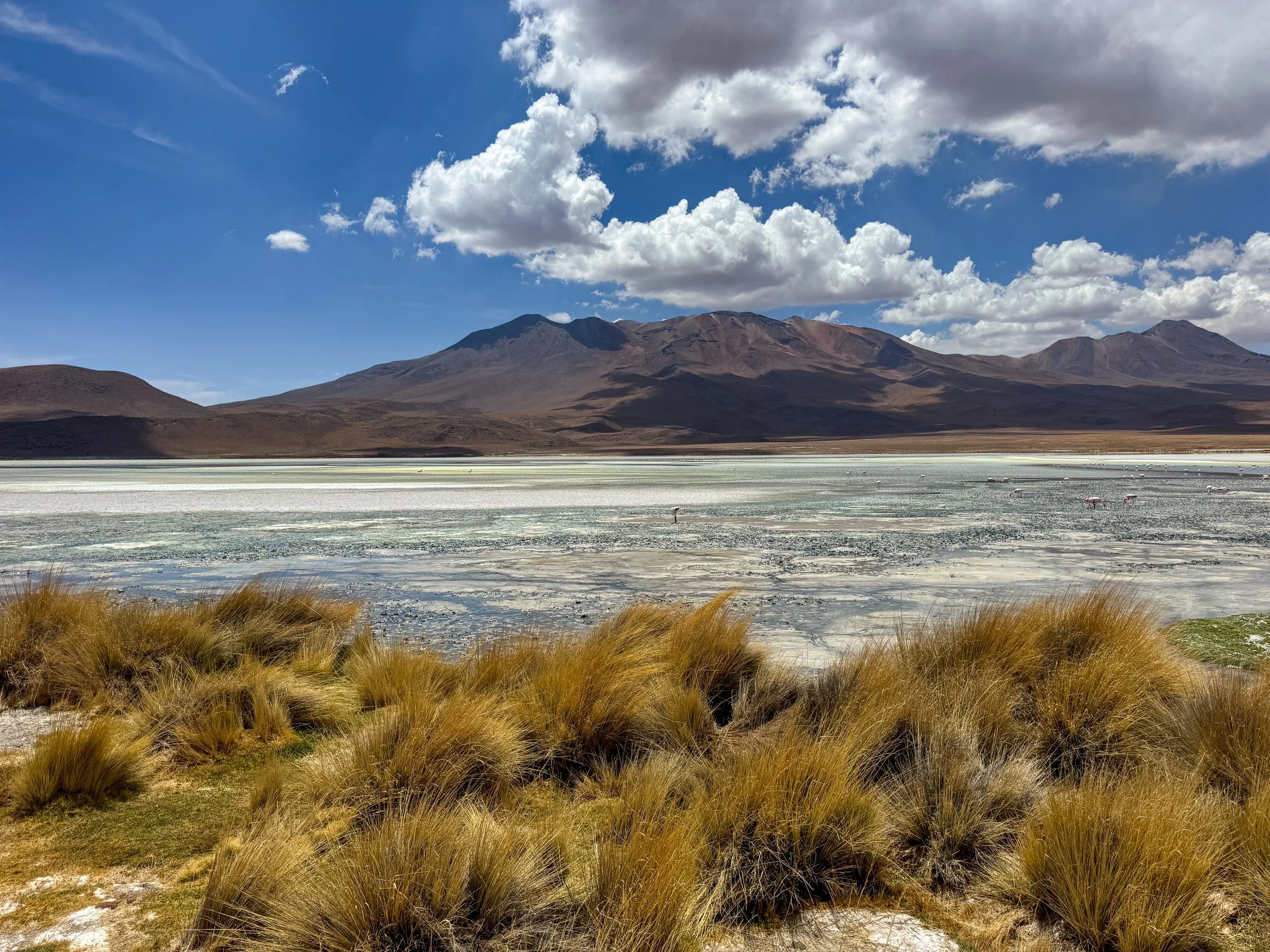
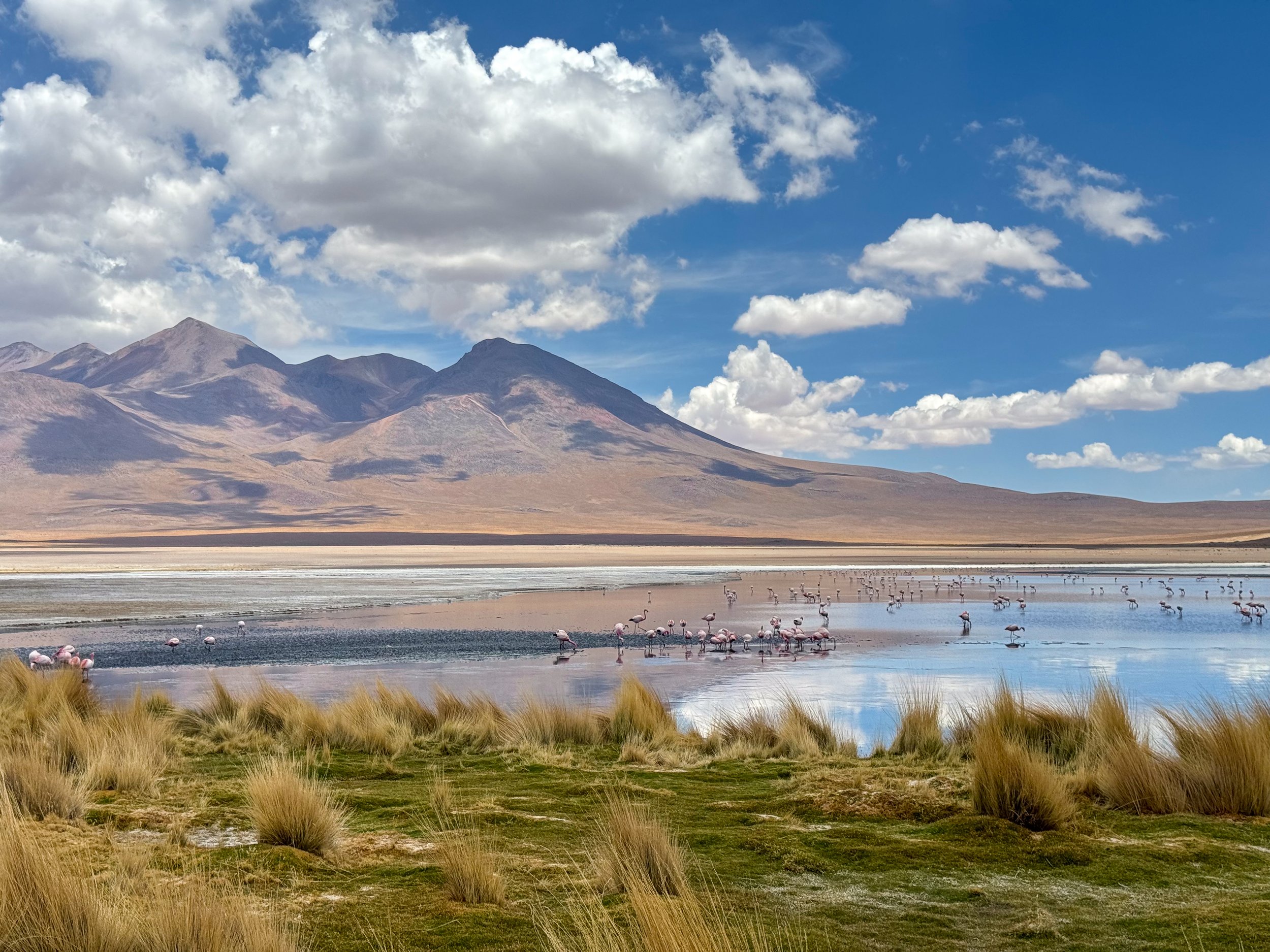

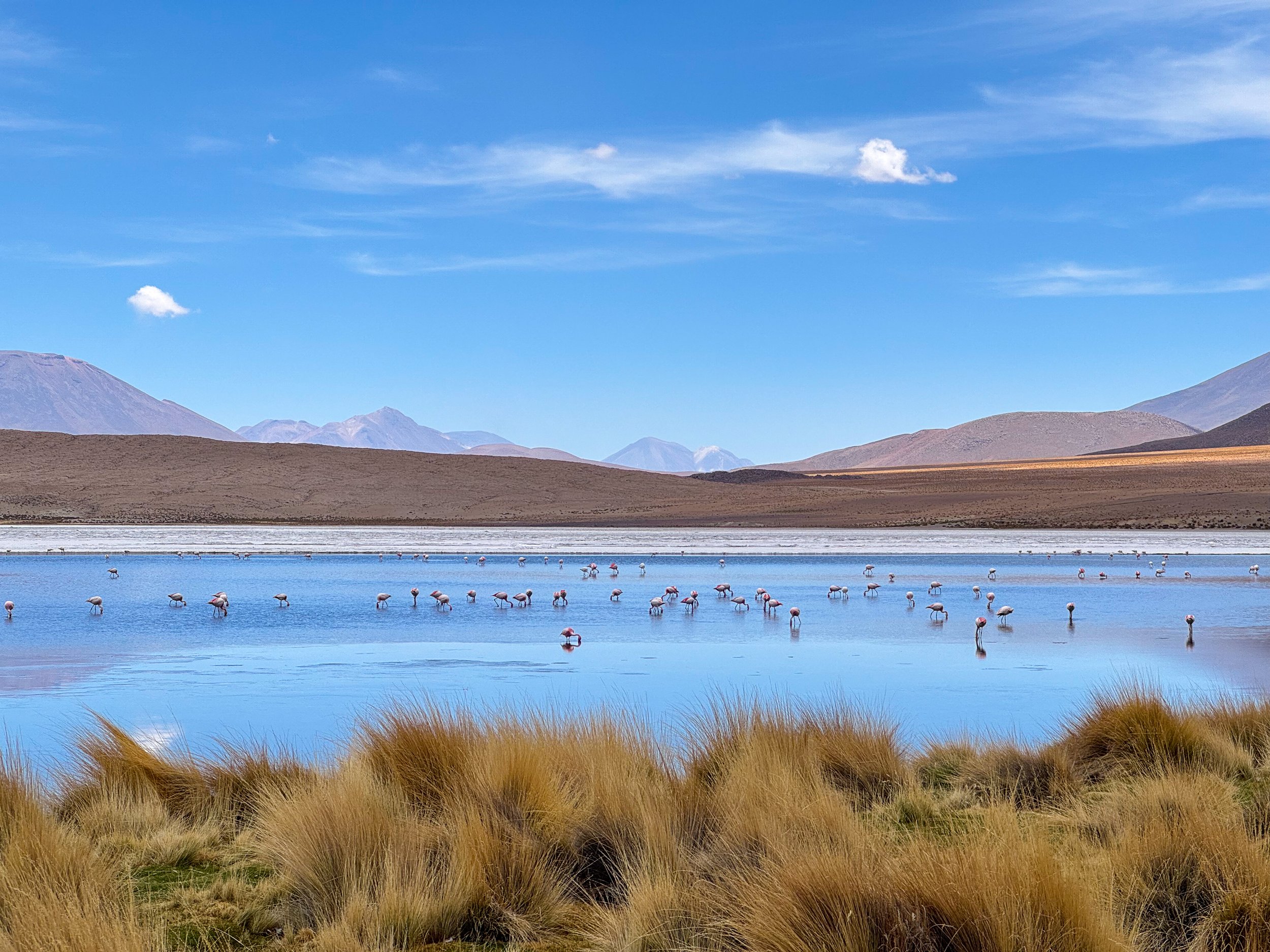
Bolivian Lagoons
Laguna Cañapa. A salty lagoon surrounded by volcanos with a colony of pink and white flamingos feeding on microorganisms in the water. We watched through binoculars as some flamingos strutted up to the waters muddy edge showing off their pink necks and tail feathers.
Laguna Hedionda. A large salt lake with hues of blue, green and yellow in front of a towering volcano. The lagoon is a feeding ground for a large population of pink and white flamingos.
Laguna Chiar Khota. A lagoon in a valley with pale blue water, salty shores and patches of yellow sulphur with flocks of feeding flamingos.
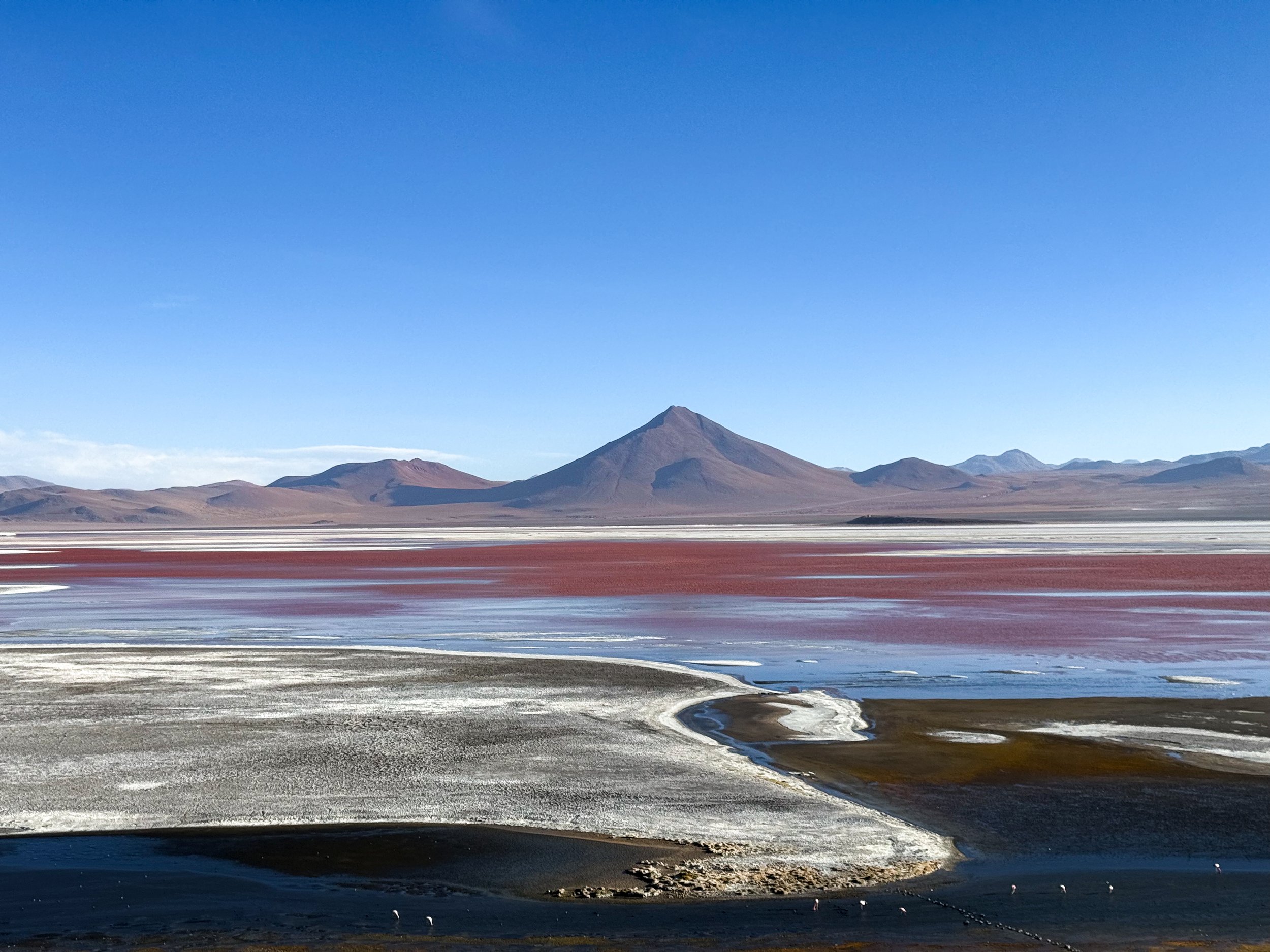
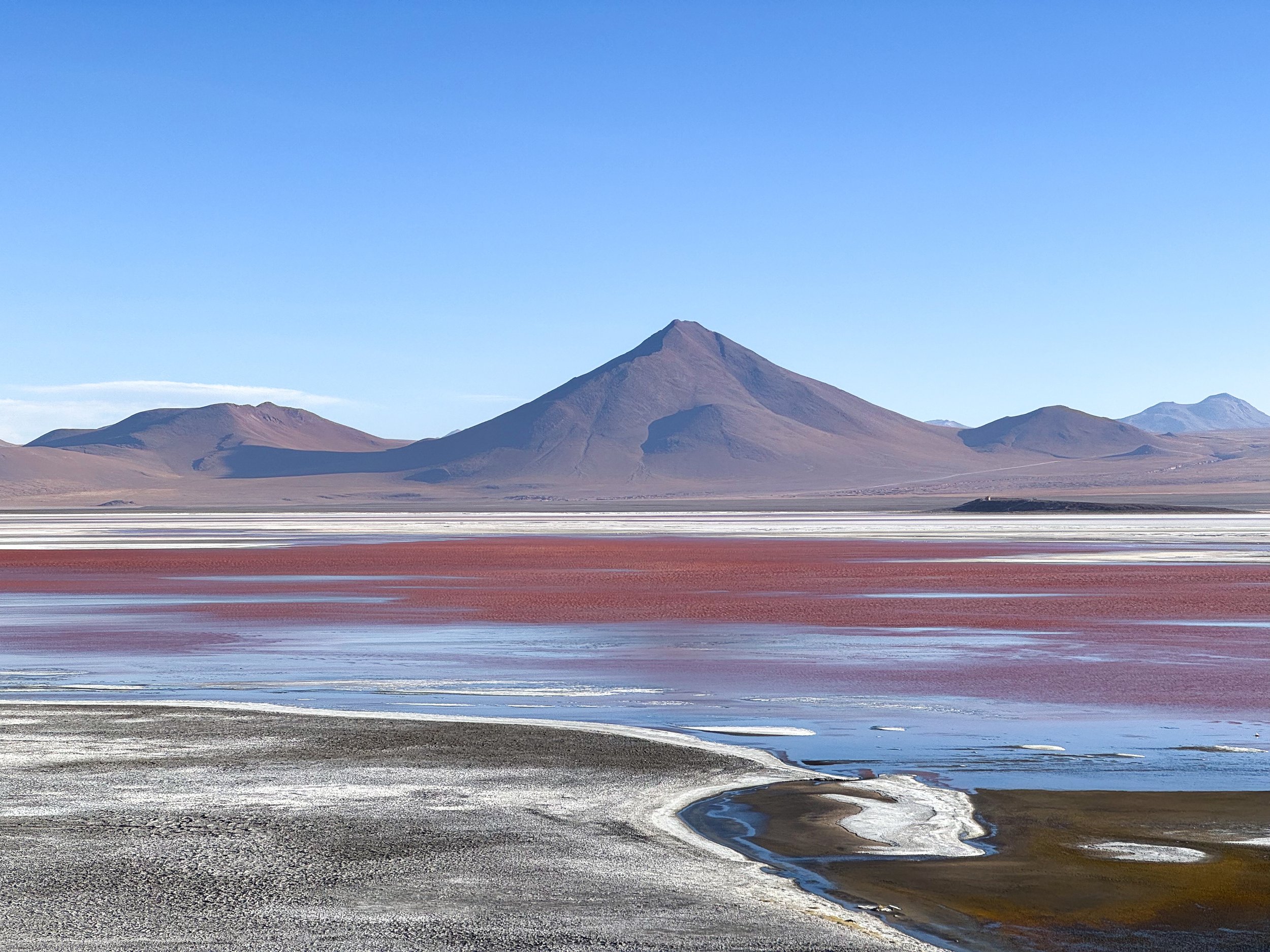

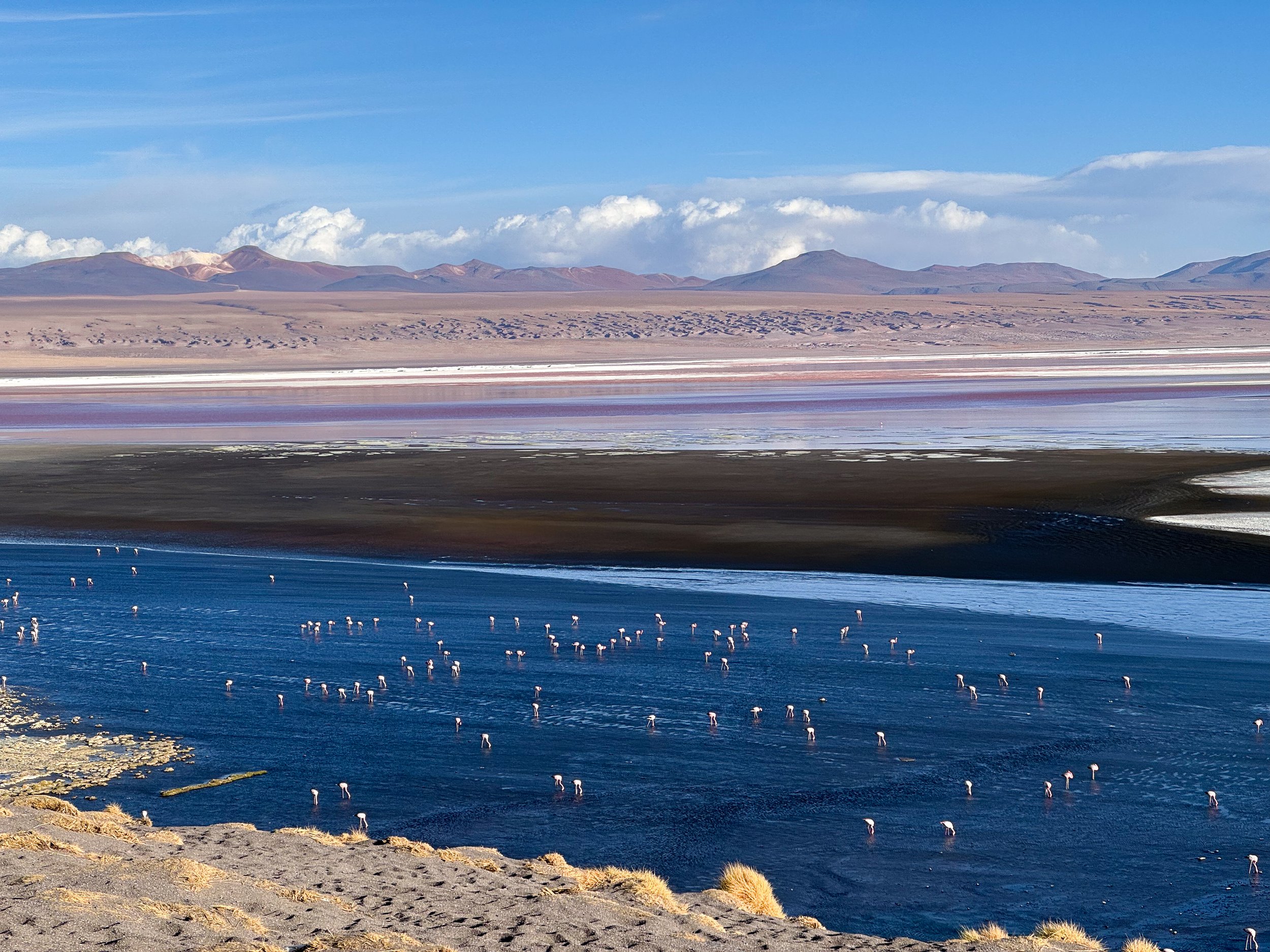
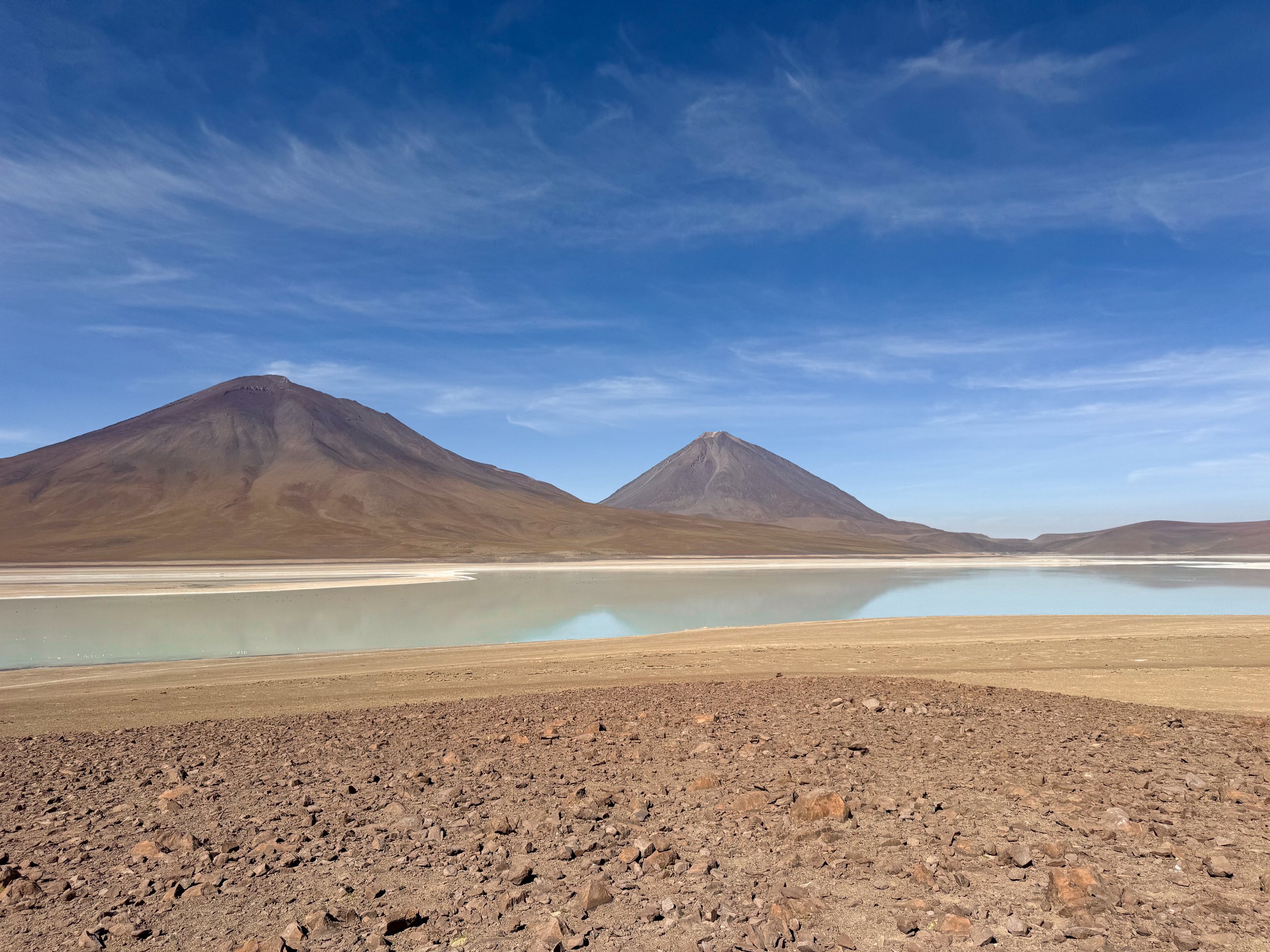
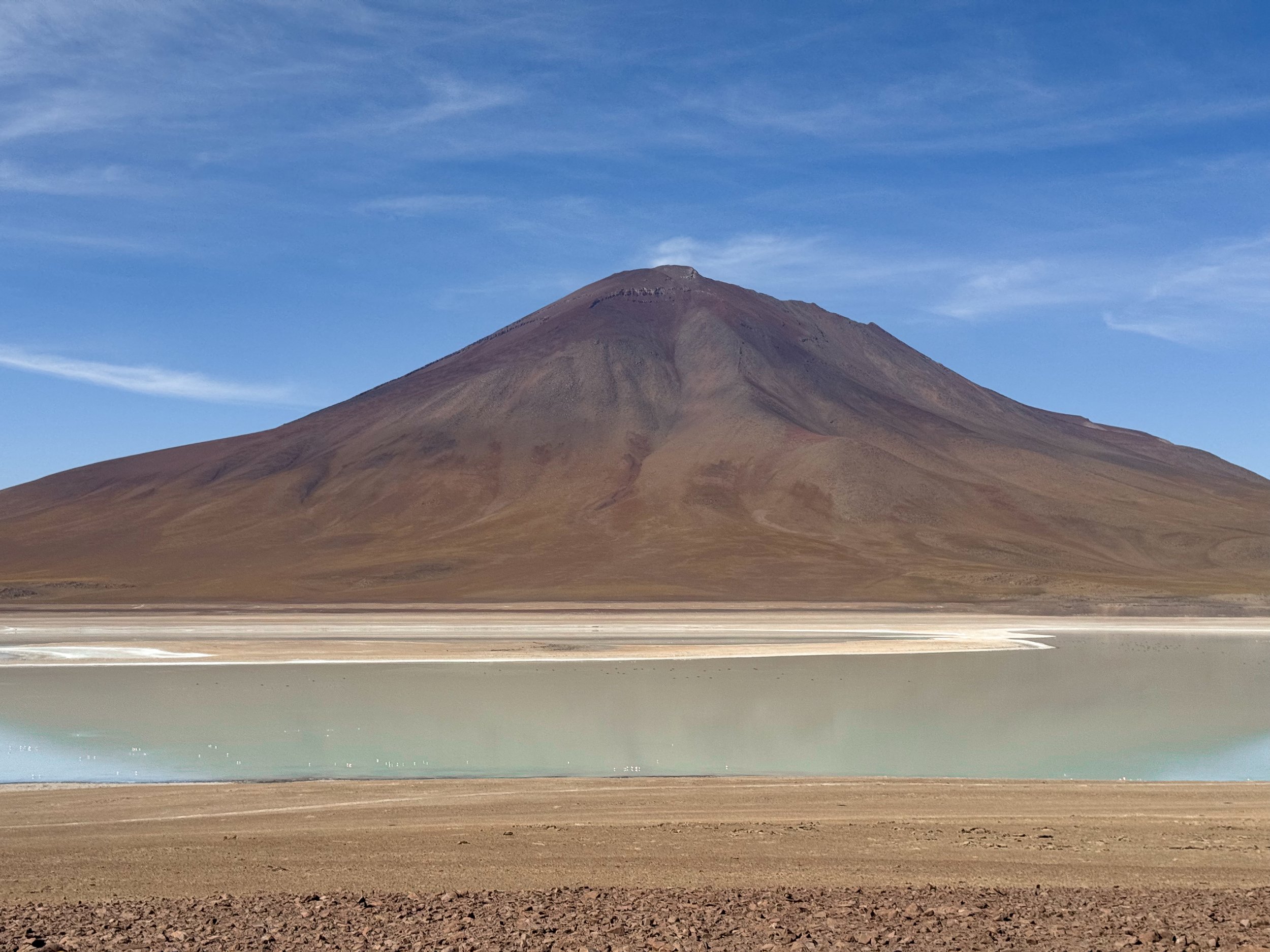
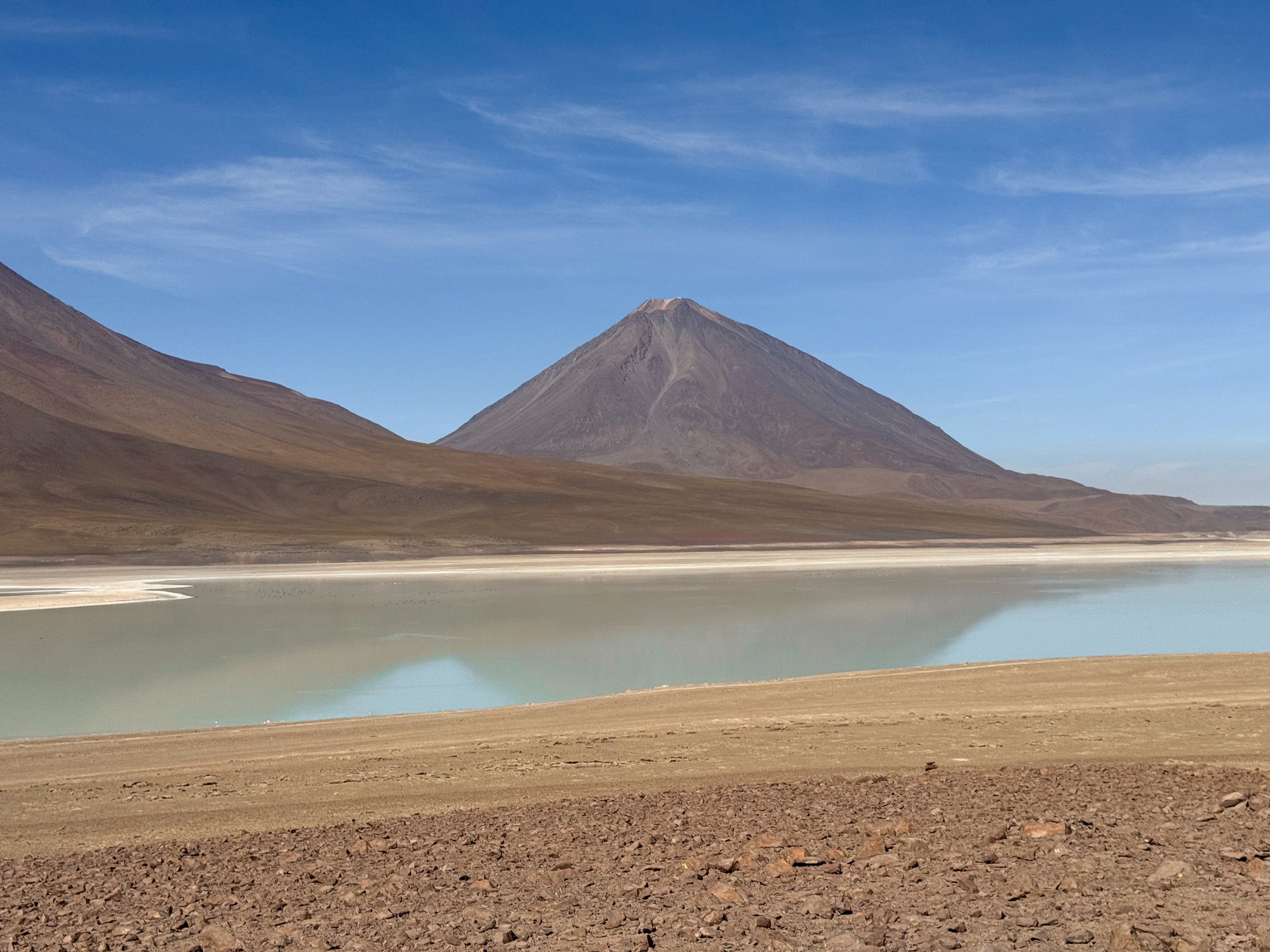
Laguna Colorada. A vast and shallow salt lake with red tinted water, a large population of flamingos and four volcanos flanking each side of the lagoon. Wild vicuñas roam the yellow grass tufted hills surrounding the lagoon.
Laguna Verde. A greenish hued saltwater lagoon set against the backdrop of two cone shaped volcanoes. It’s home to feeding pink flamingos.
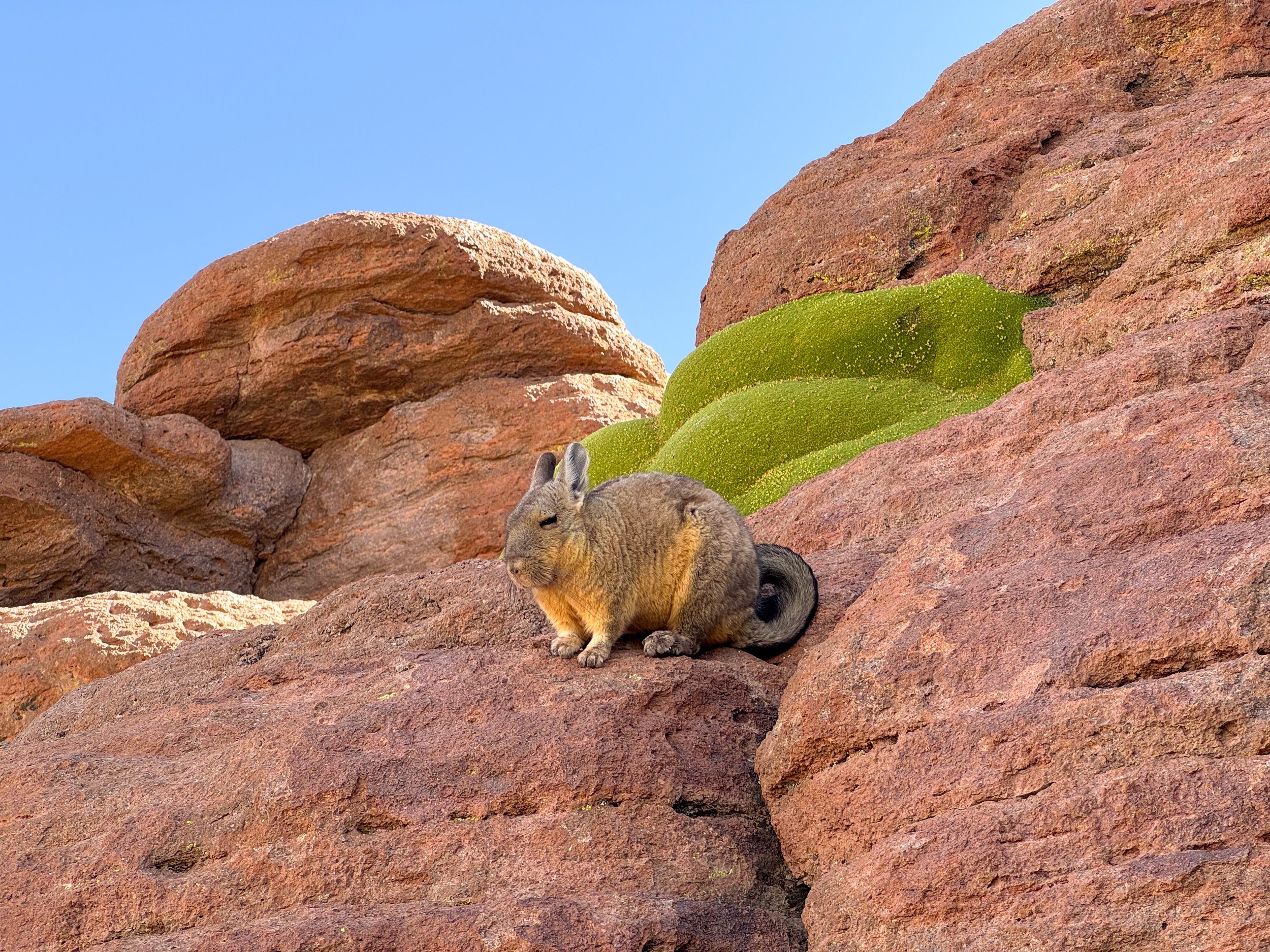
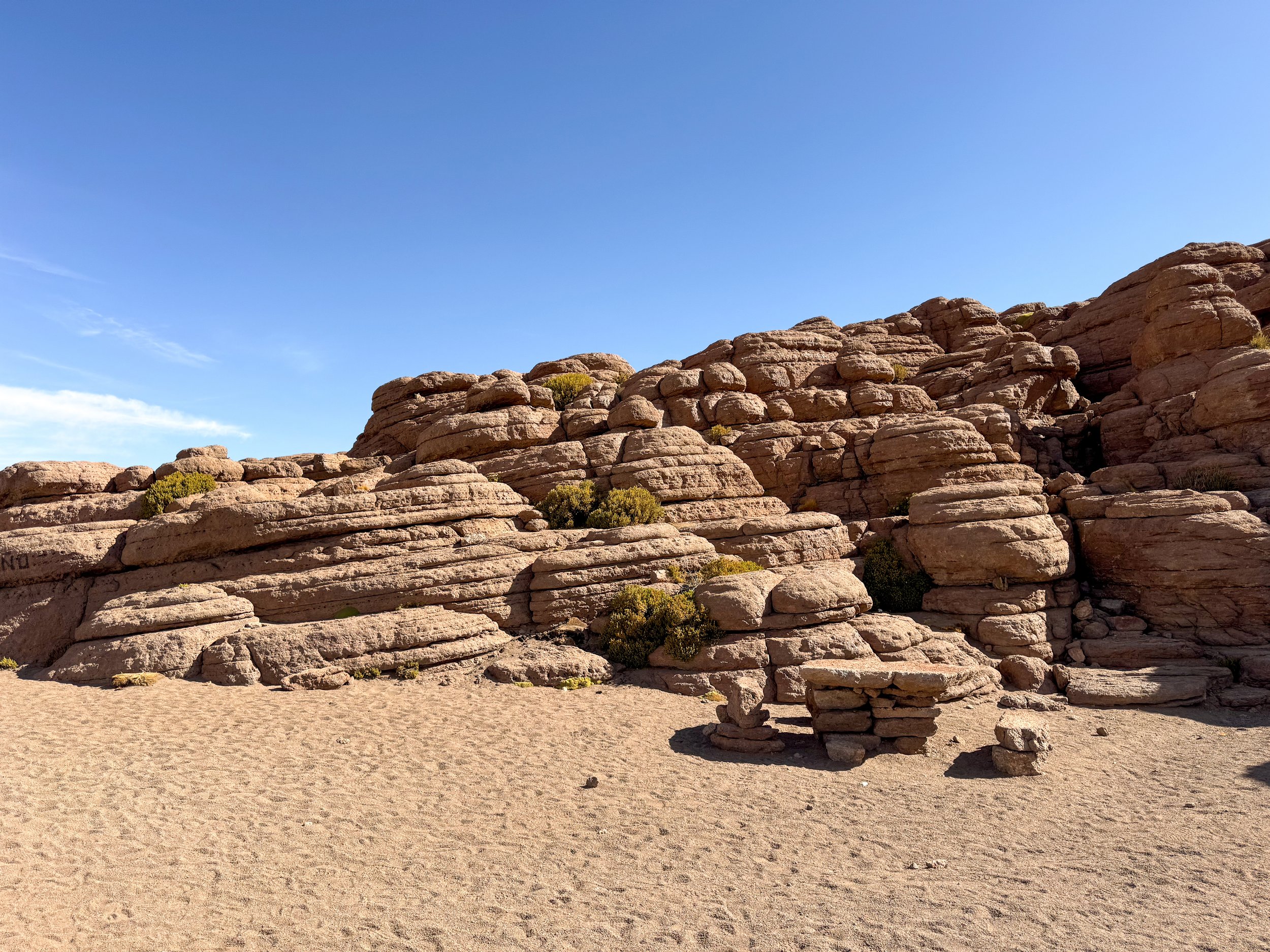
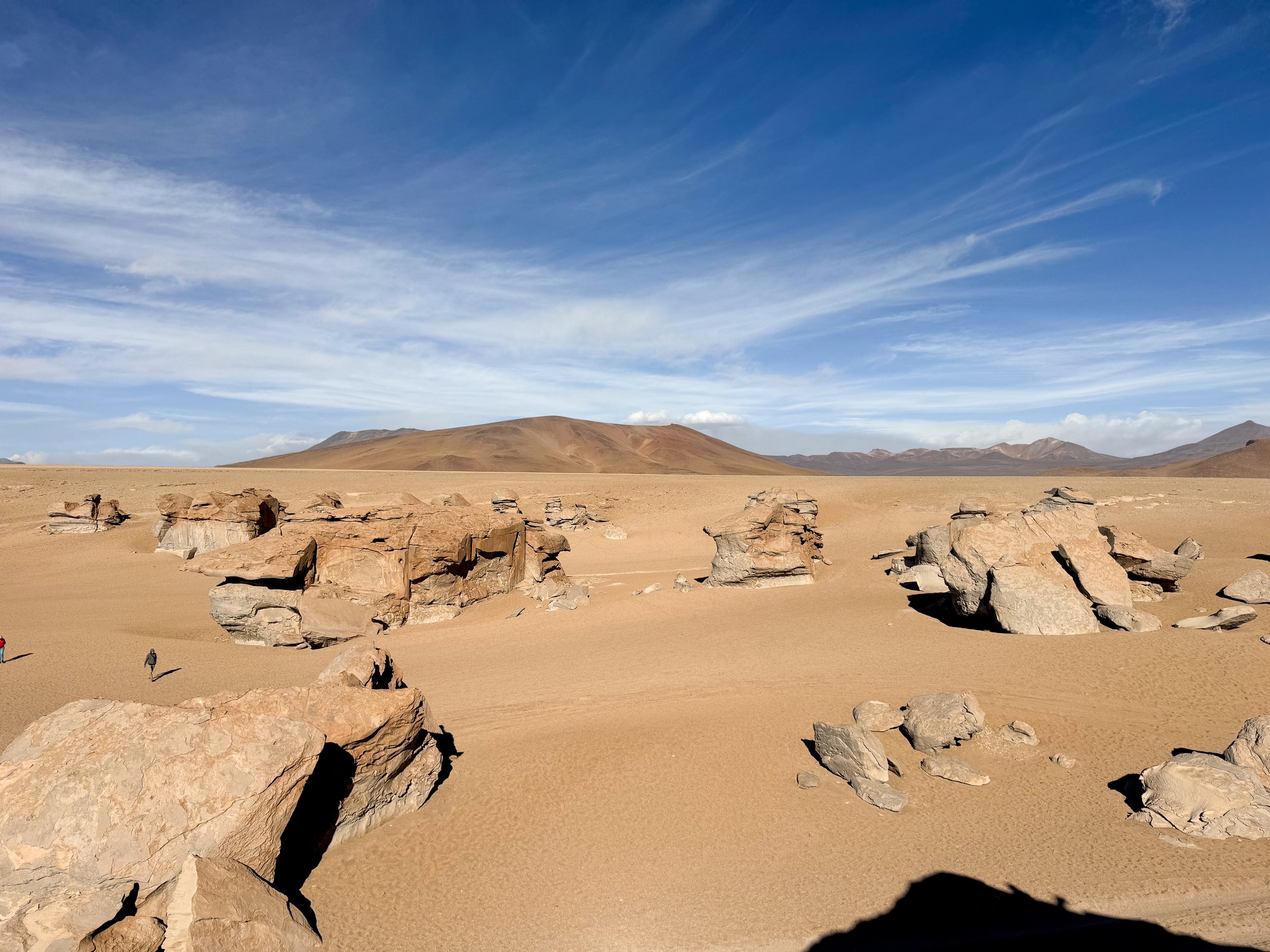
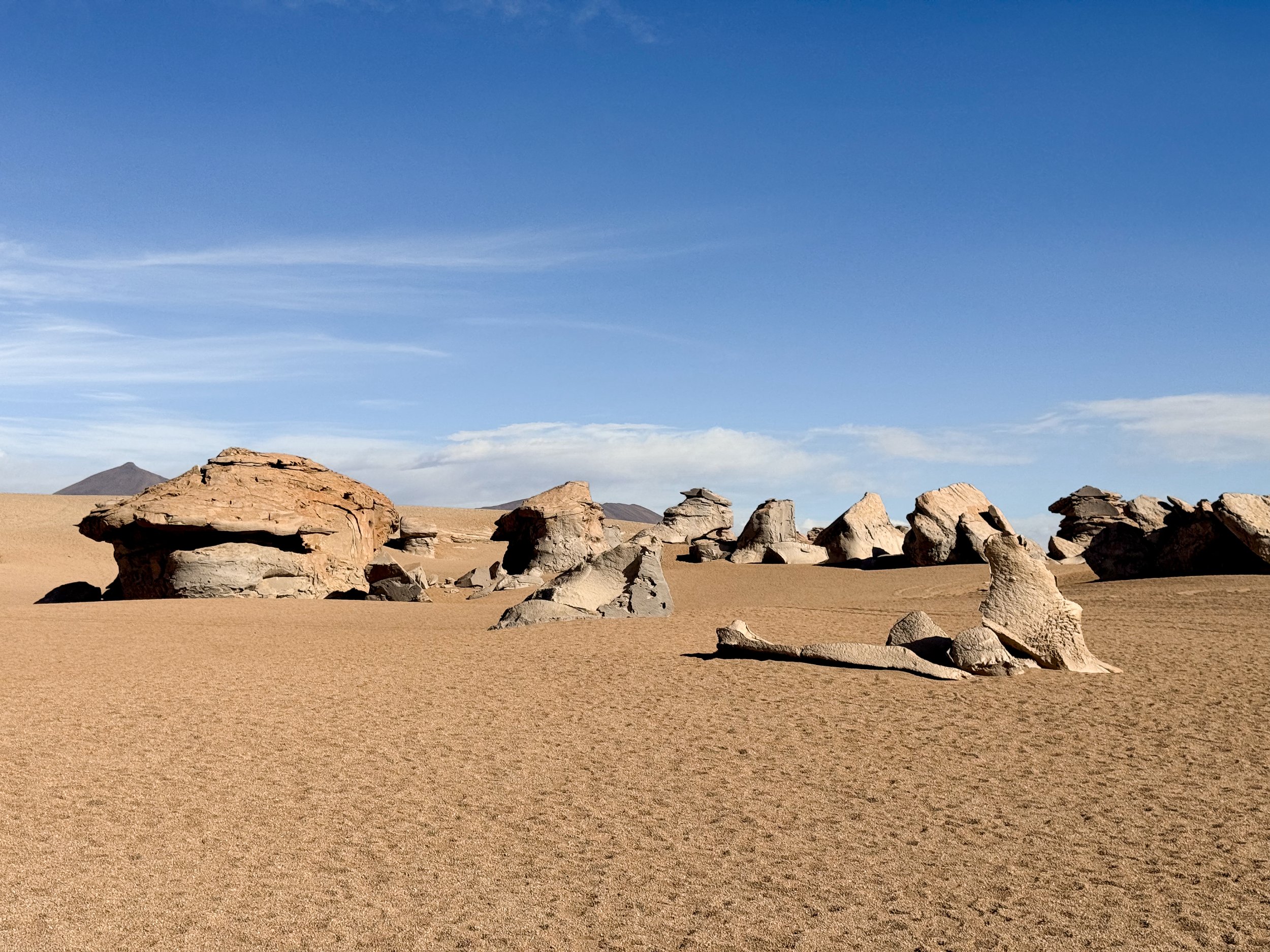
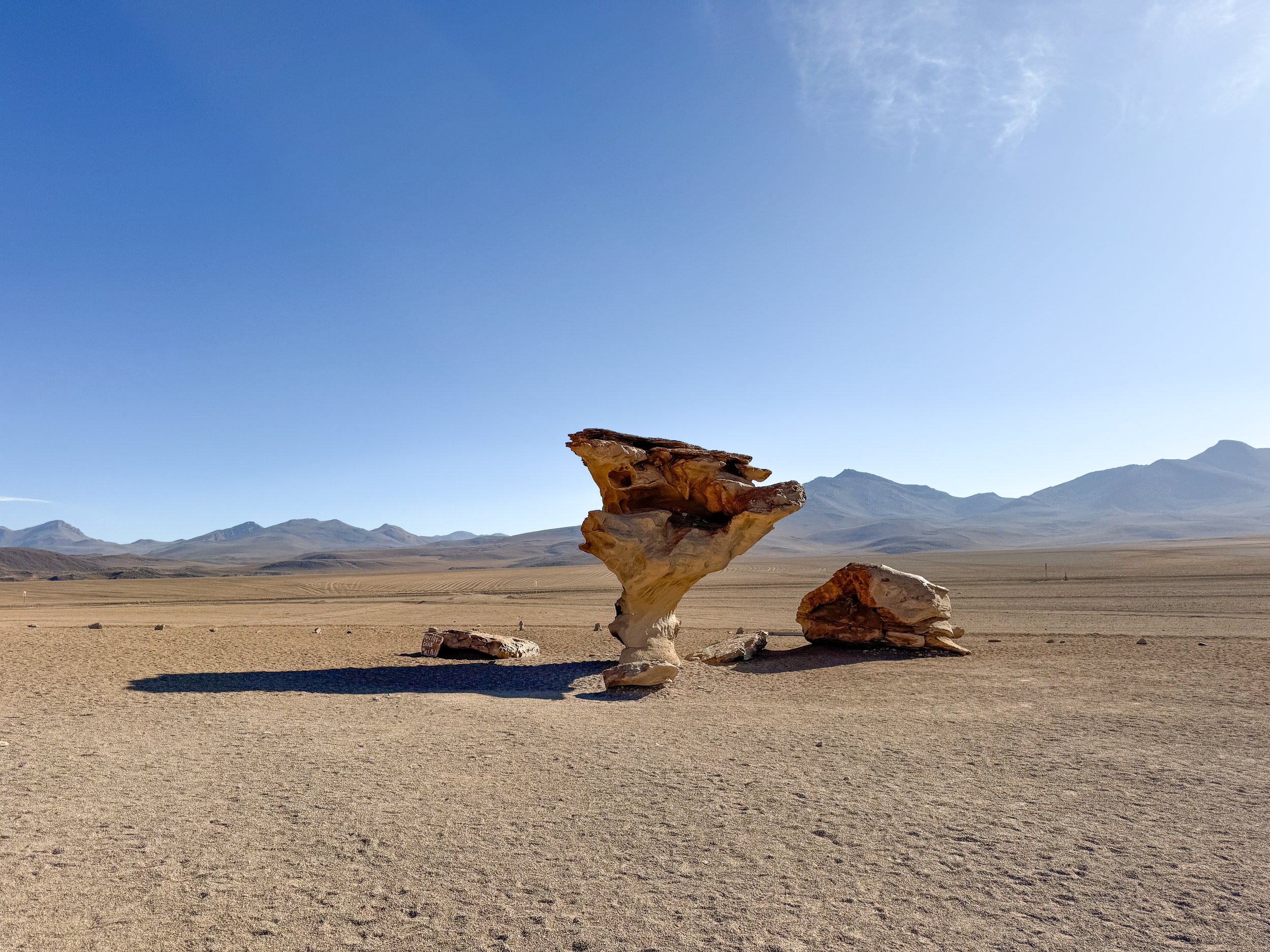
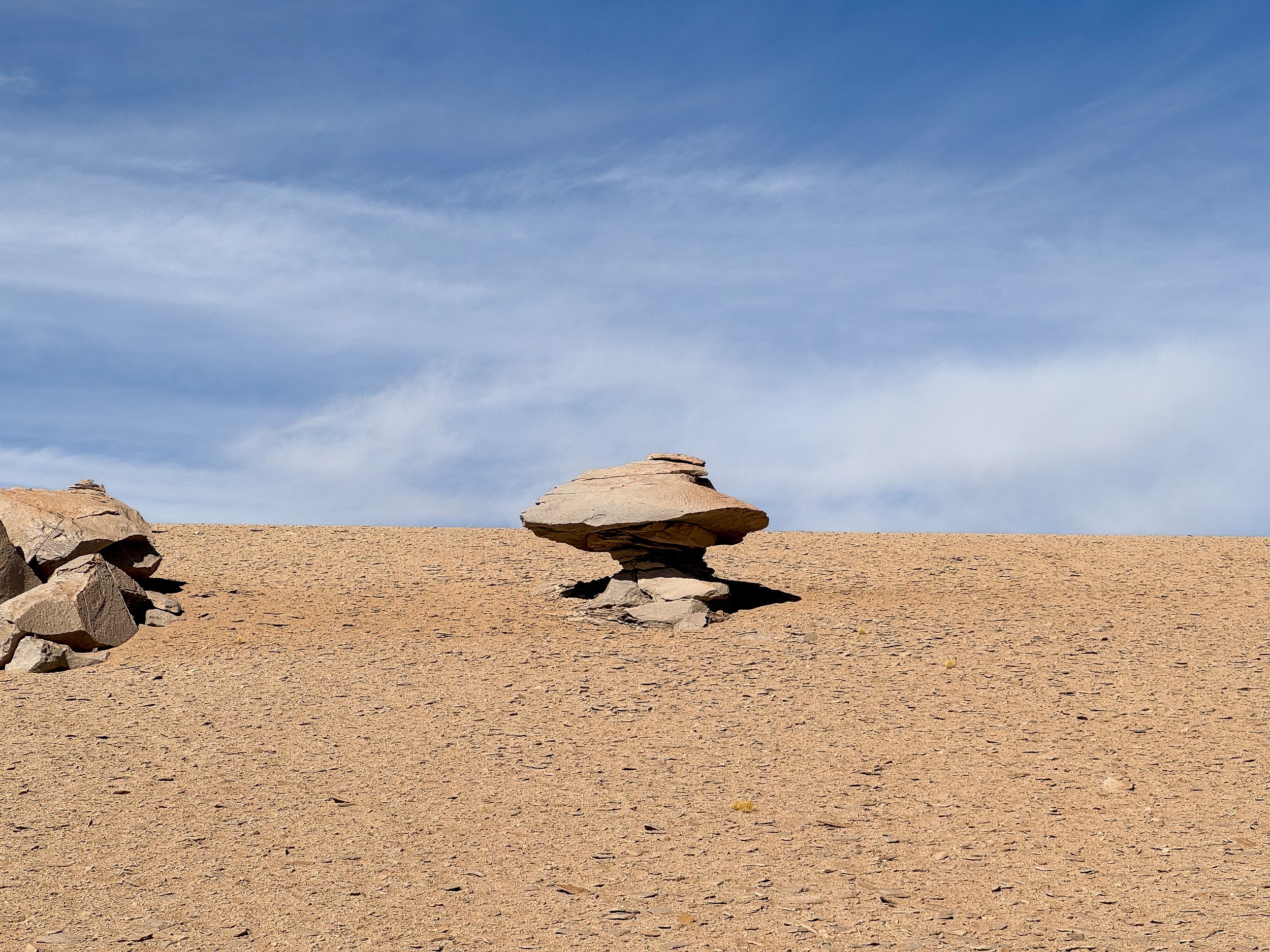
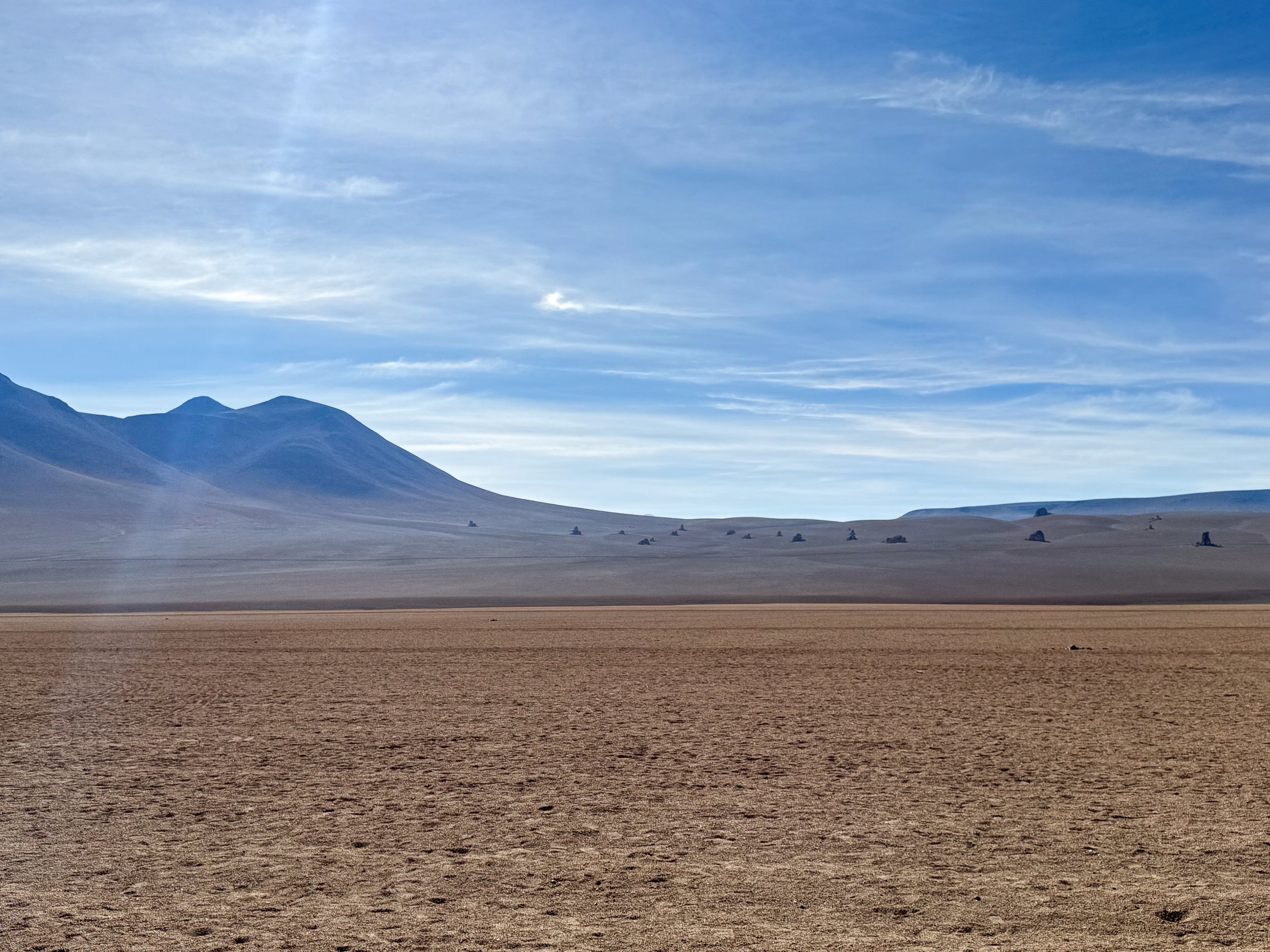
Rock Formations
Roca de Viscachas. A volcanic formation of eroded sheets of rock home to Vizcacha, a chinchilla like rodent and tiny mice.
Valle de Rocas. A valley of rocks that have been eroded by wind speeds of 130km and freezing temperatures of -25C creating a unique formations of split and splintered rock. Two of the most iconic formations are the mushroom and Arbol de Piedra.
The Dali Desert. A desert with a surreal landscape that resembles one of Salvador Dali’s paintings. Large rocks rest upright along an ancient lava flow from a volcano that’s profile resembles the face of an elephant.
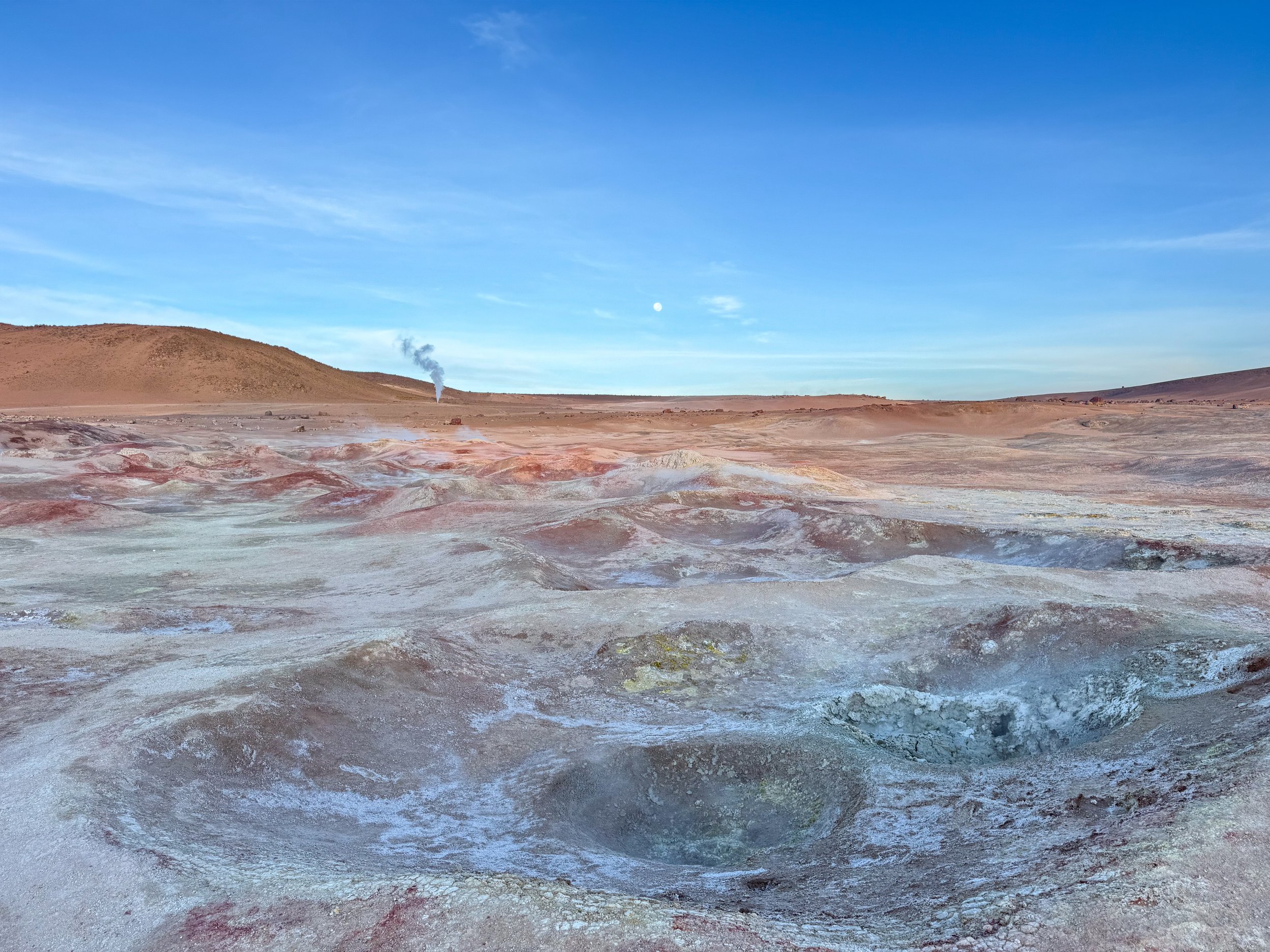
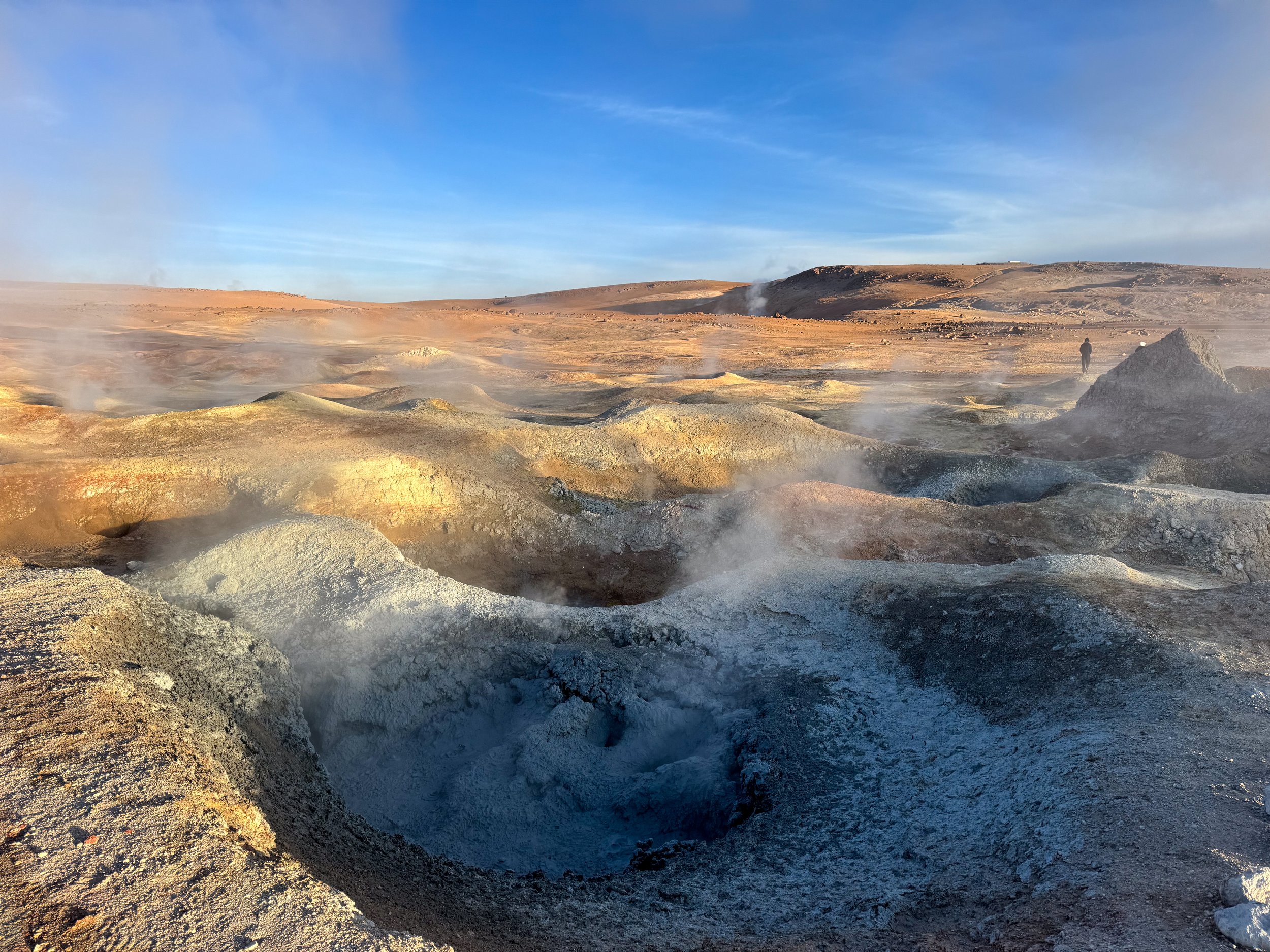
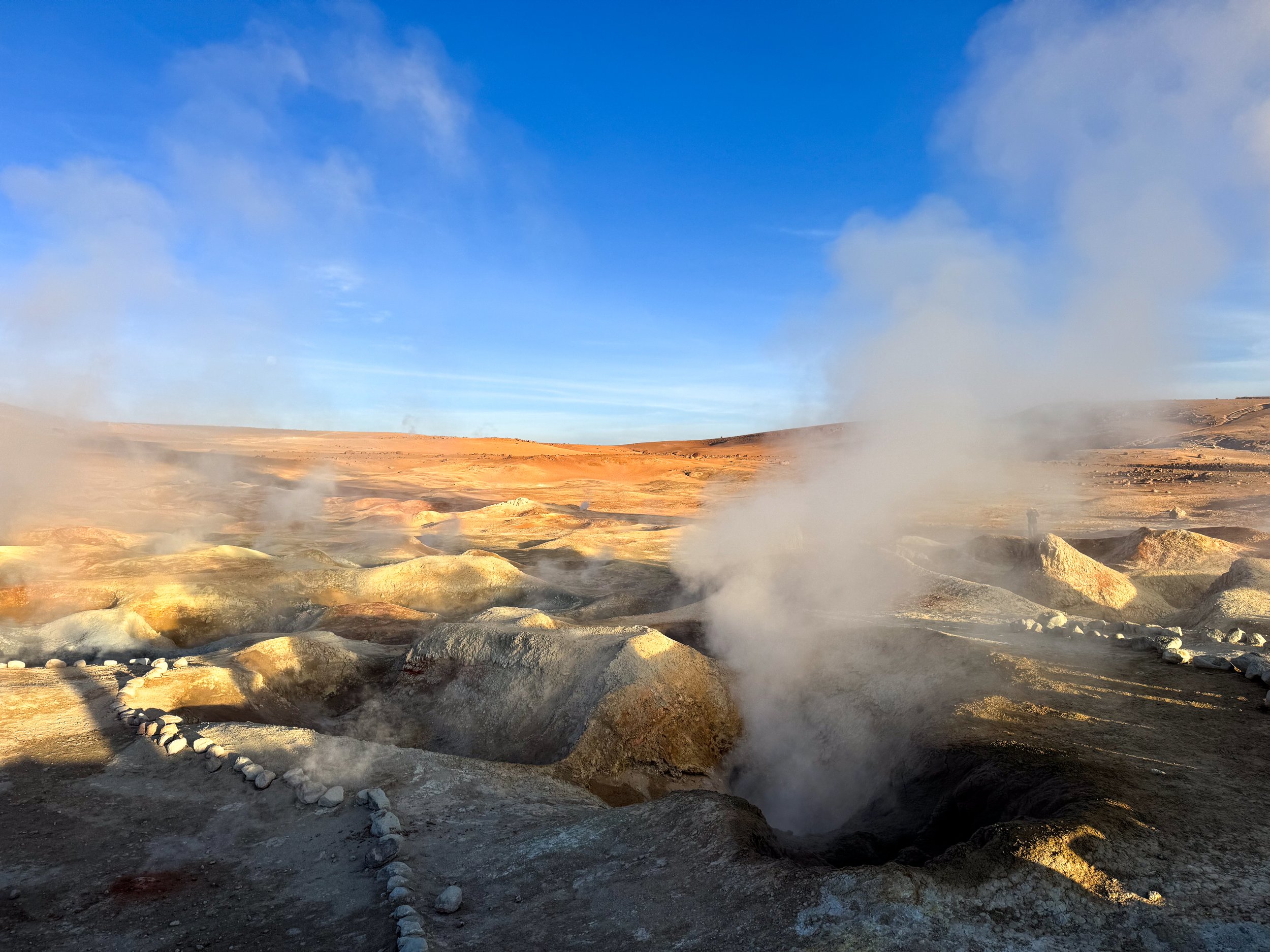
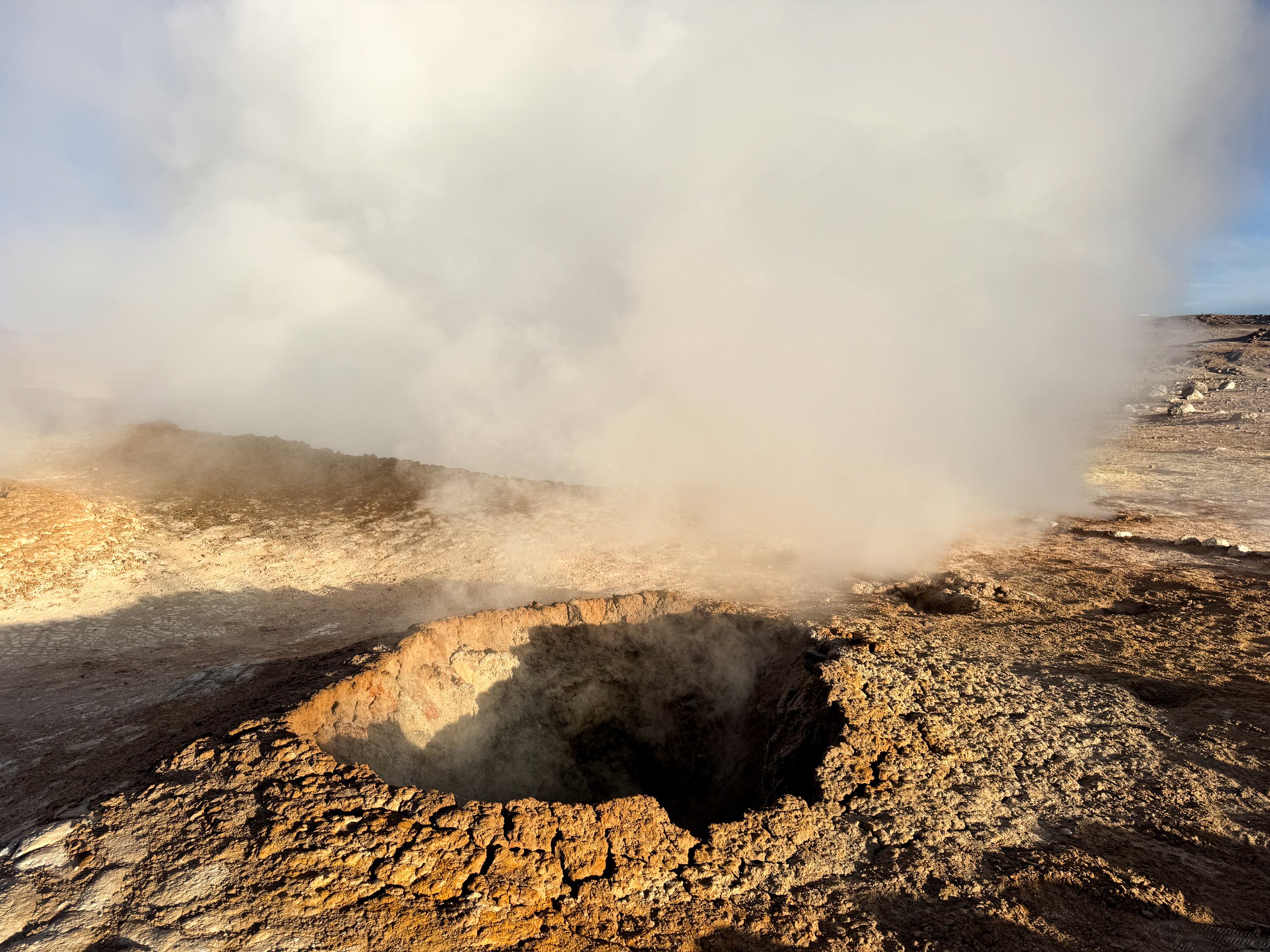
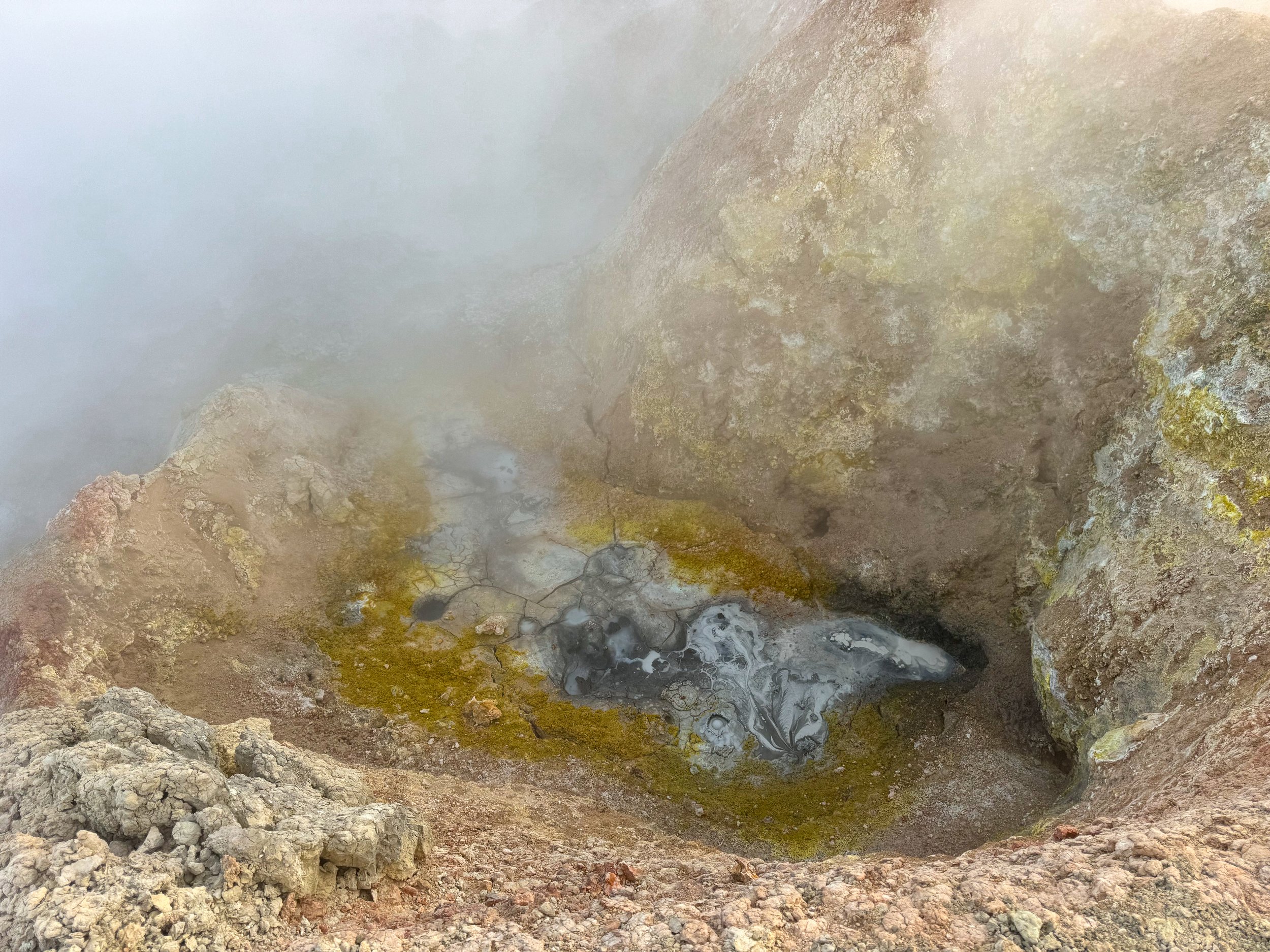
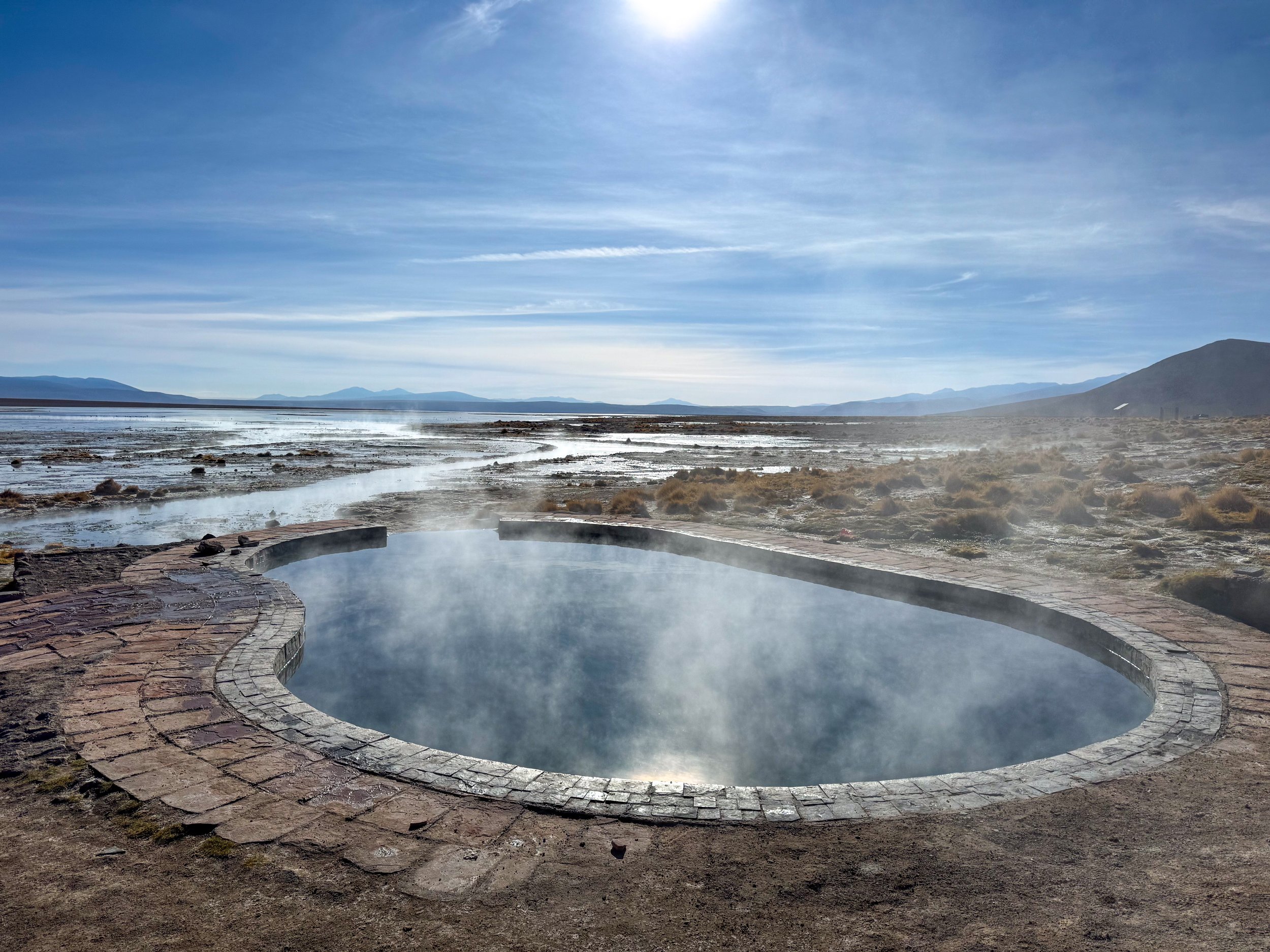
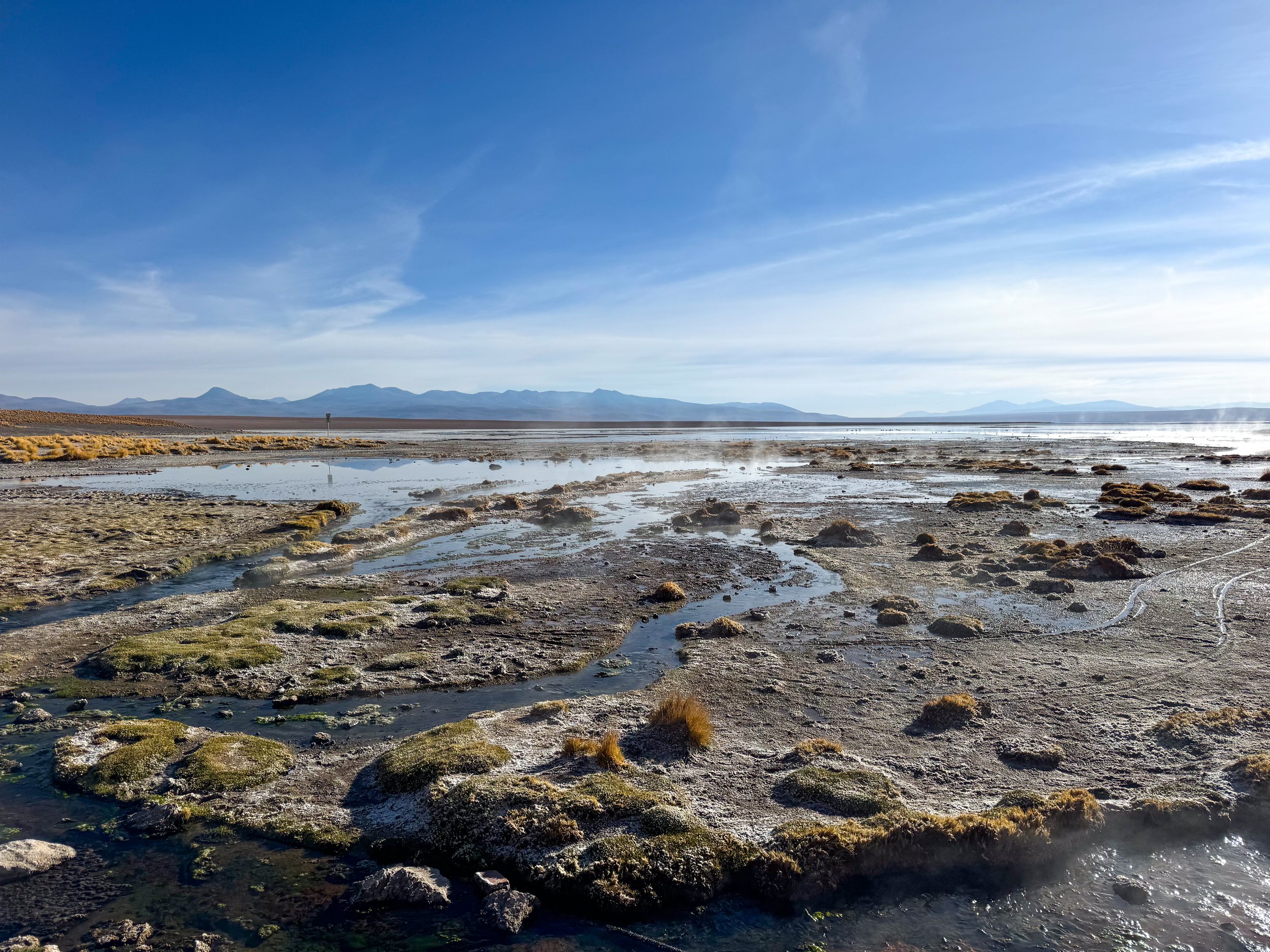
Geothermal Activity
Sol de Mañana Geysers. A series of steam vents, bubbling pools of mud and sulphuric deposits covering the barren desert landscape. We walked between the smelly and steaming vents, warming our hands in the below freezing temperatures at nearly 5,000 meters above sea level.
Aguas Termales de Polques. A natural hot spring with two steaming pools at the edge of a saltwater lagoon. We relaxed here for half an hour, at one point having the pool entirely to ourselves.
Where to Stay
Hotel Warara. A salt hotel on with walls, decor, tables and bed frames all made from salt blocks, plaster and crystals. We stayed here one night during our tour of the Uyuni Salt Flats and Bolivian Desert.
Hostel San Marcelo. A hostel in a small village on the other side of the Laguna Colorada. The rooms are basic but have twin beds, layers of warm blankets for the cold nights and shared restrooms. The hostel lacks electricity & wifi.
Perla de Bolivia
We visited the Uyuni Salt Flats and sights across the Bolivian Desert with Perla de Bolivia. On the four day tour from La Paz, Bolivia to San Pedro de Atacama, Chile. The tour included transportation, accommodations, guides, meals, snacks, water, including vegetarian options. Book here!
La Paz, Bolivia
La Paz is the capital of Bolivia sitting nearly 12,000ft above sea level in the Central Andes. It’s a melting pot for Bolivian peoples, both indigenous and urban as well as a gastronomic hub for Andean and Amazonian flavors.
An Andean Metropolis
La Paz is the capital of Bolivia sitting nearly 12,000ft above sea level in the Central Andes. It’s a melting pot for Bolivian peoples, both indigenous and urban as well as a gastronomic hub for Andean and Amazonian flavors. Between its green spaces, markets and skyscrapers, the metropolis is a sprawling place to explore. We wandered the busy streets, rode the teleferico high above the city and hiked to urban lookouts. At night, as the colorful roofs fade into darkness, the city begins to glow with the warmth of twinkle lights.
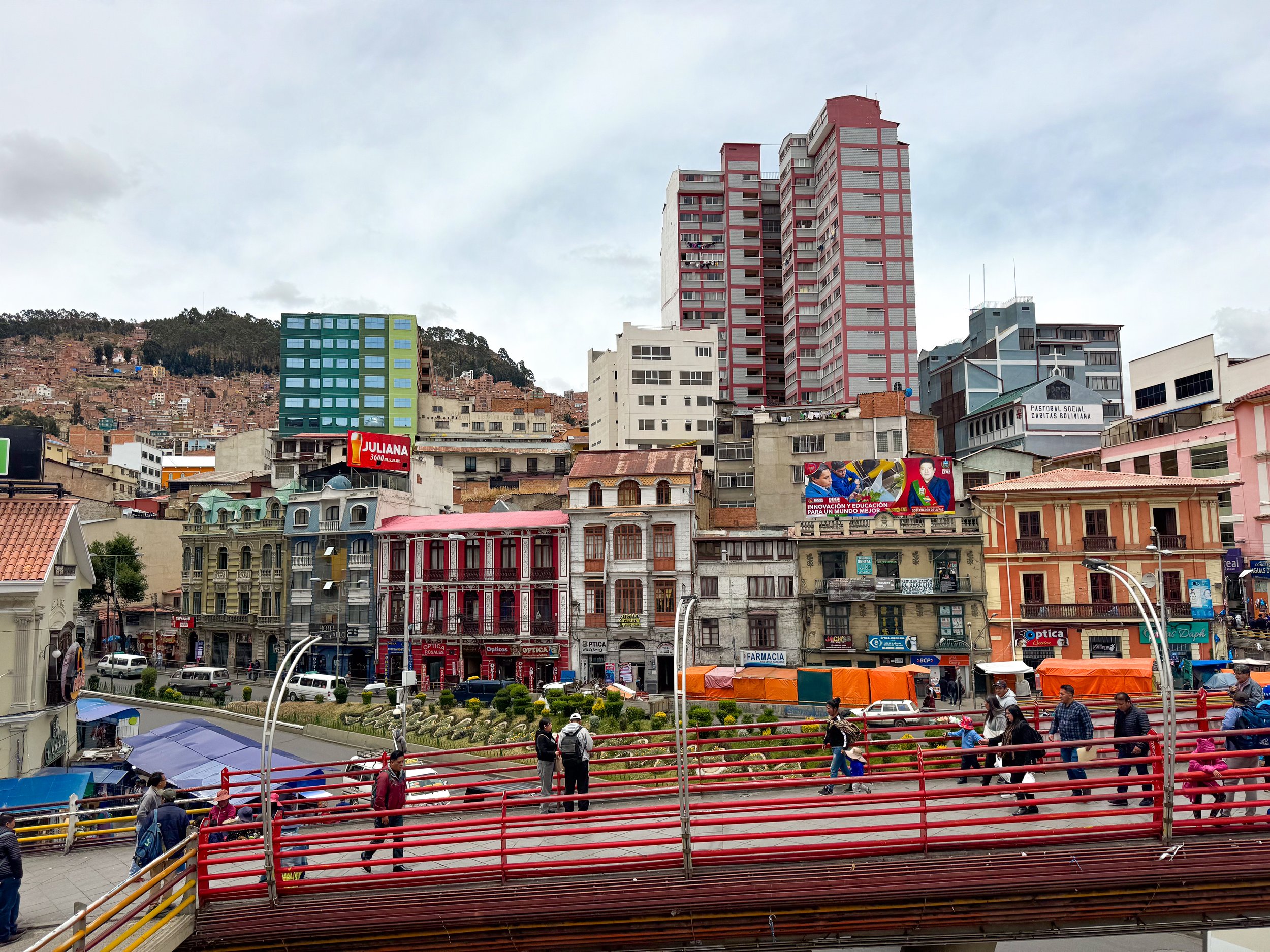
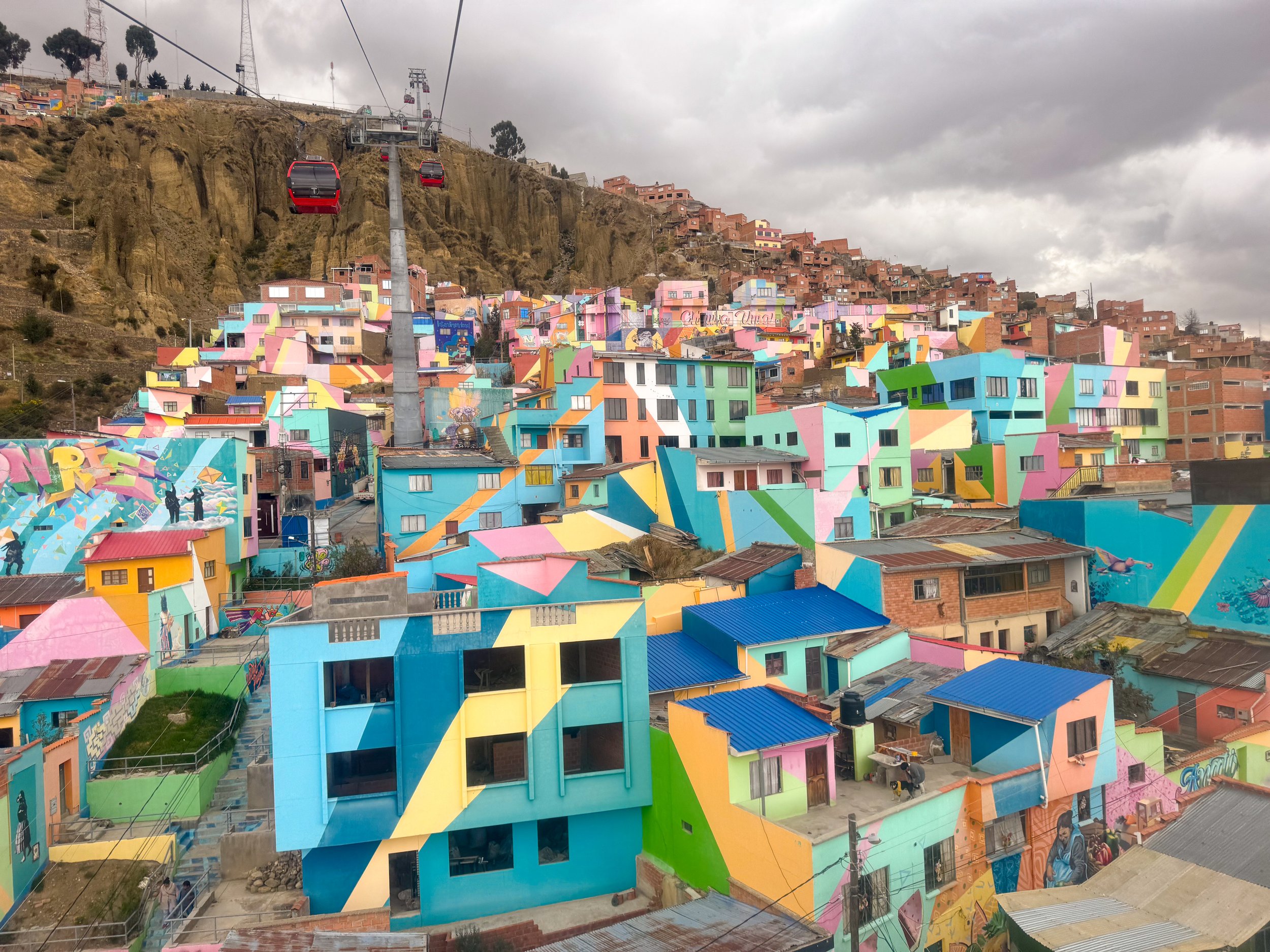
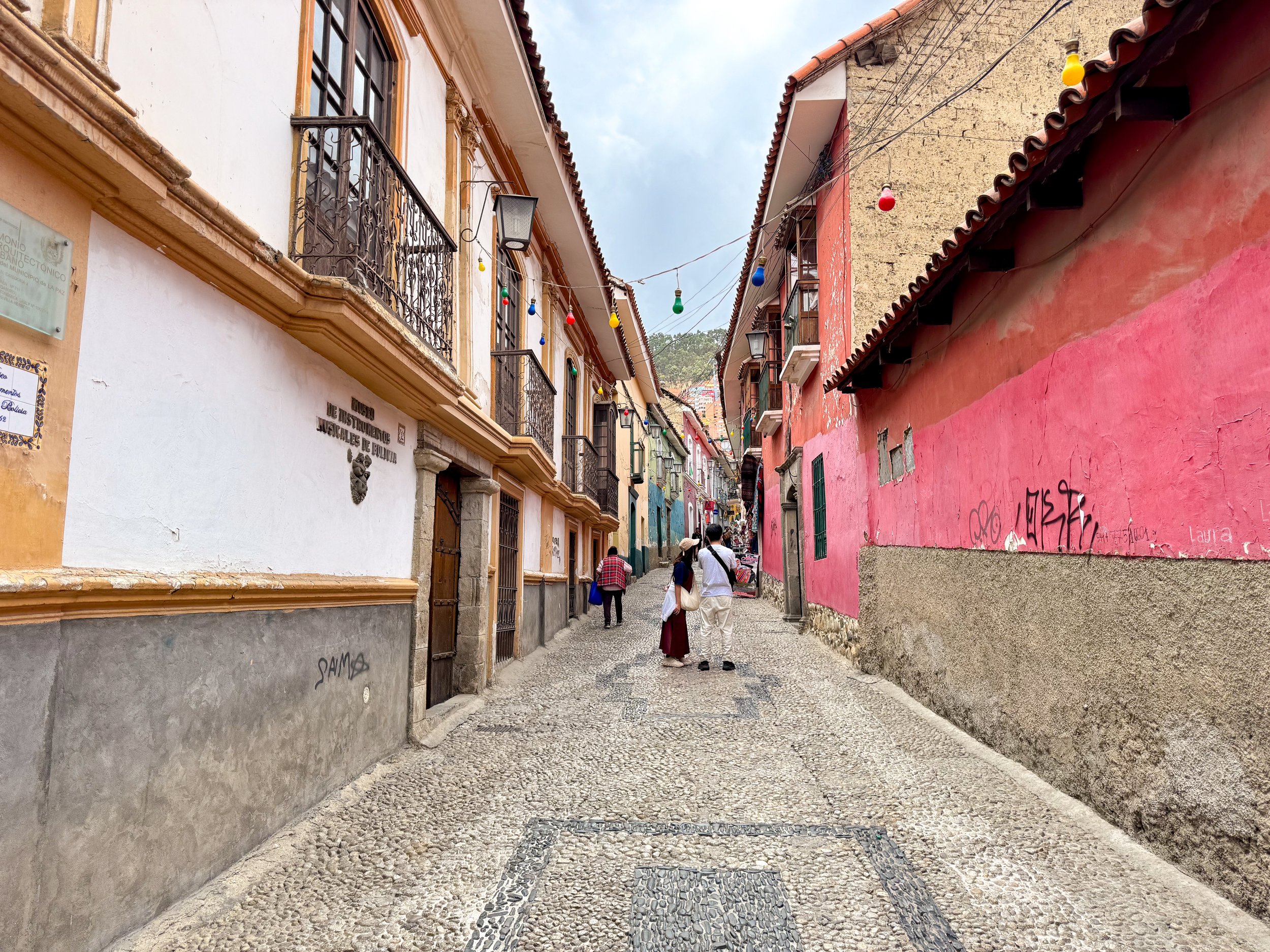
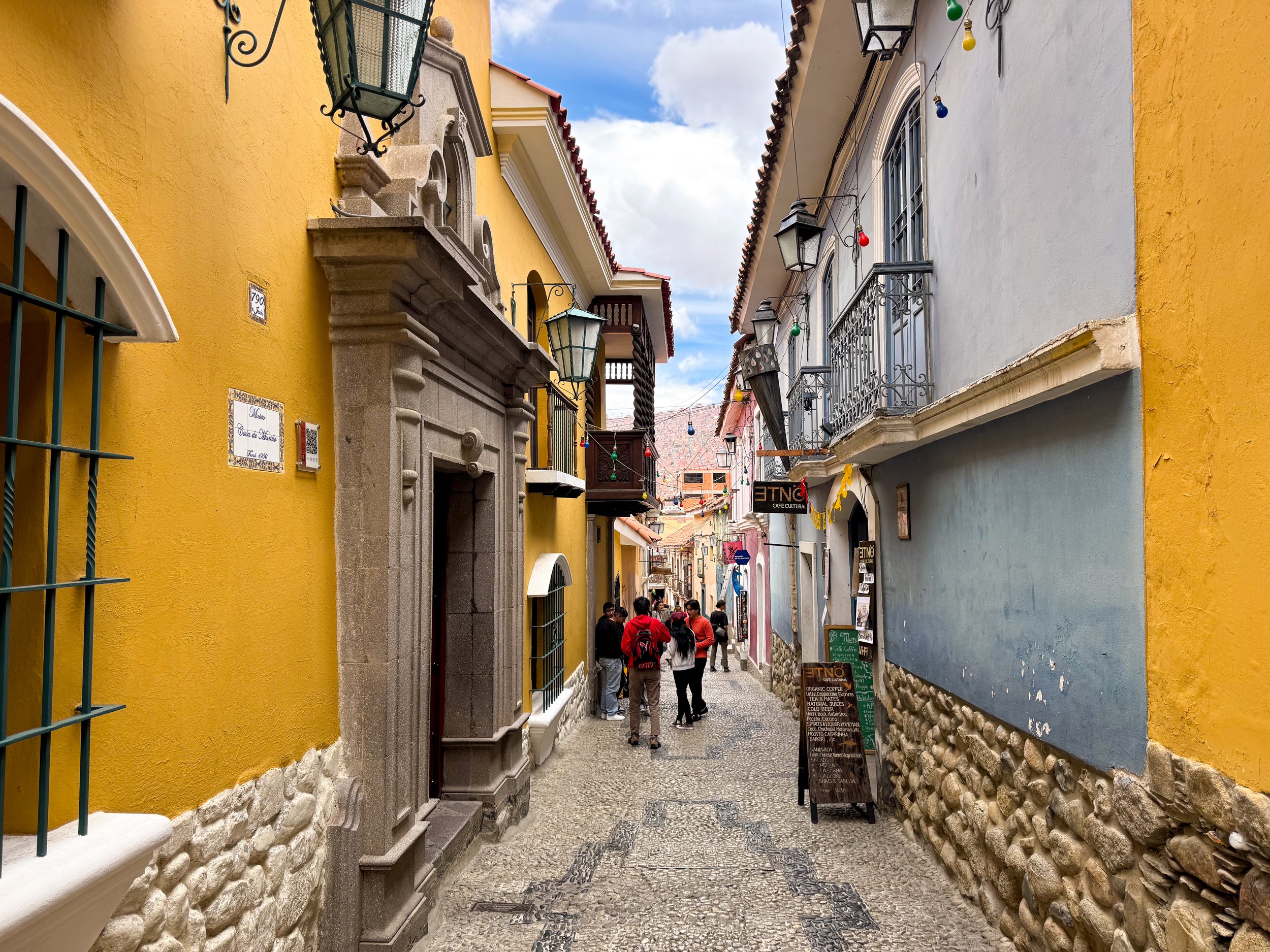
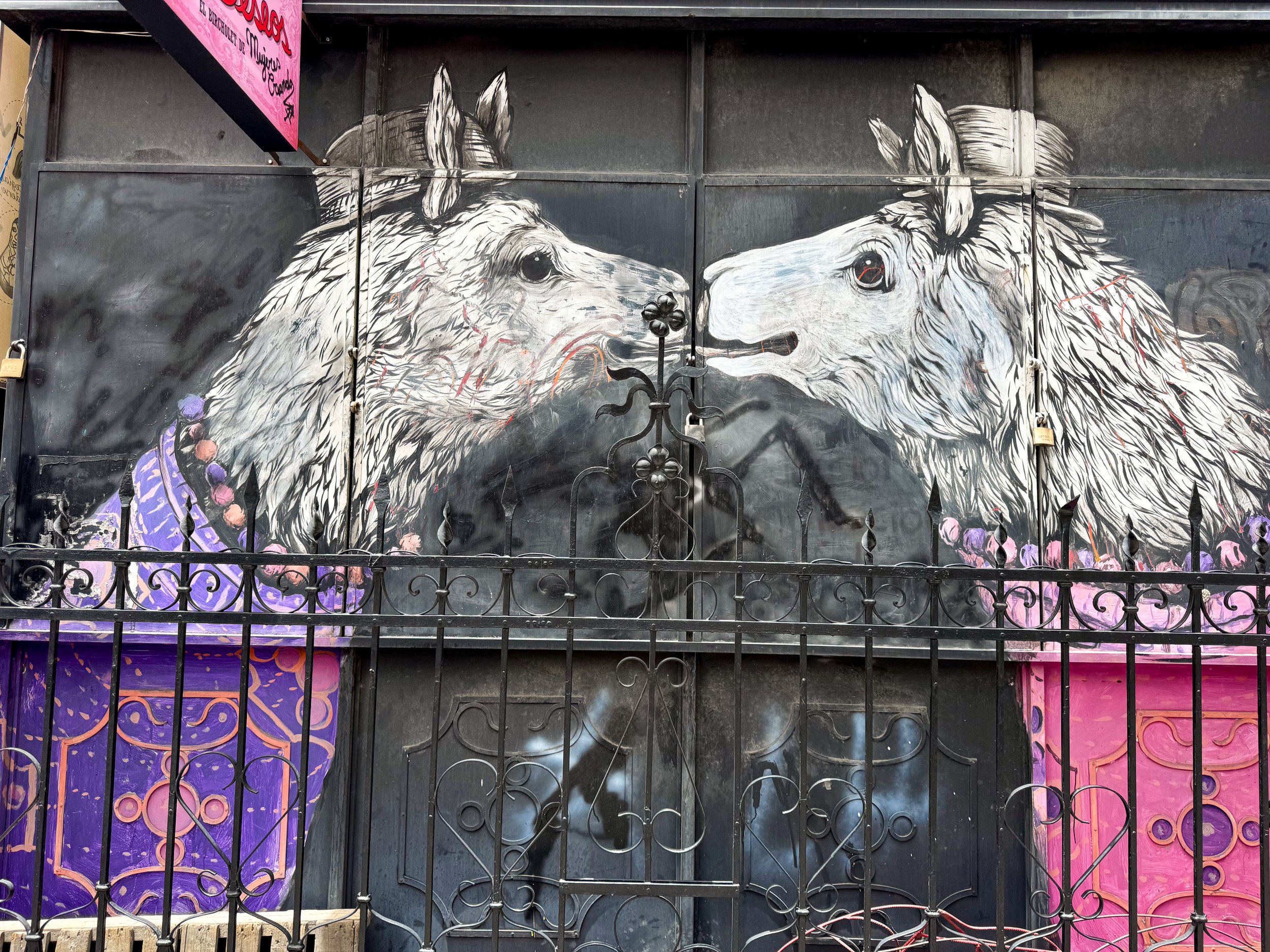
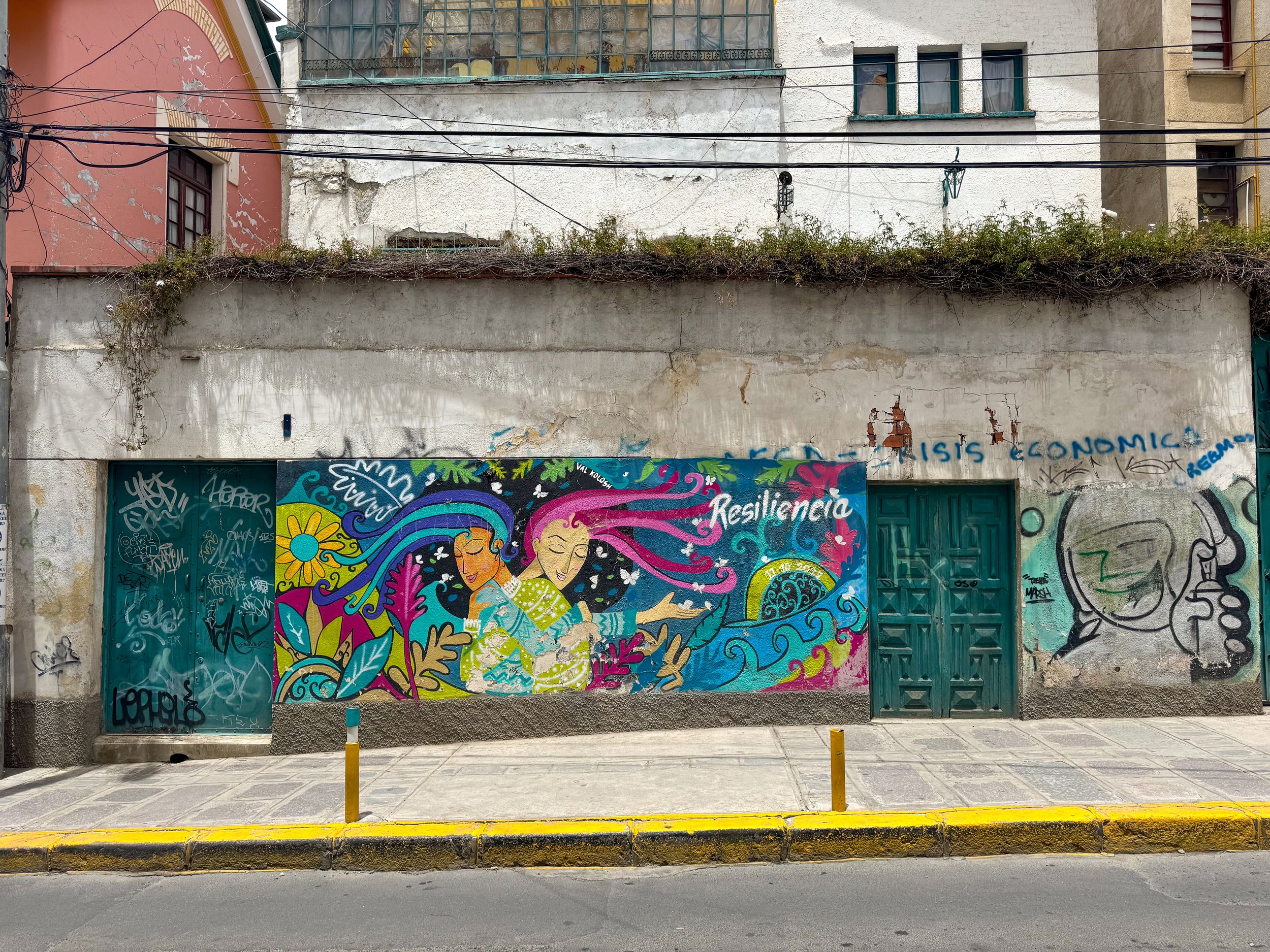
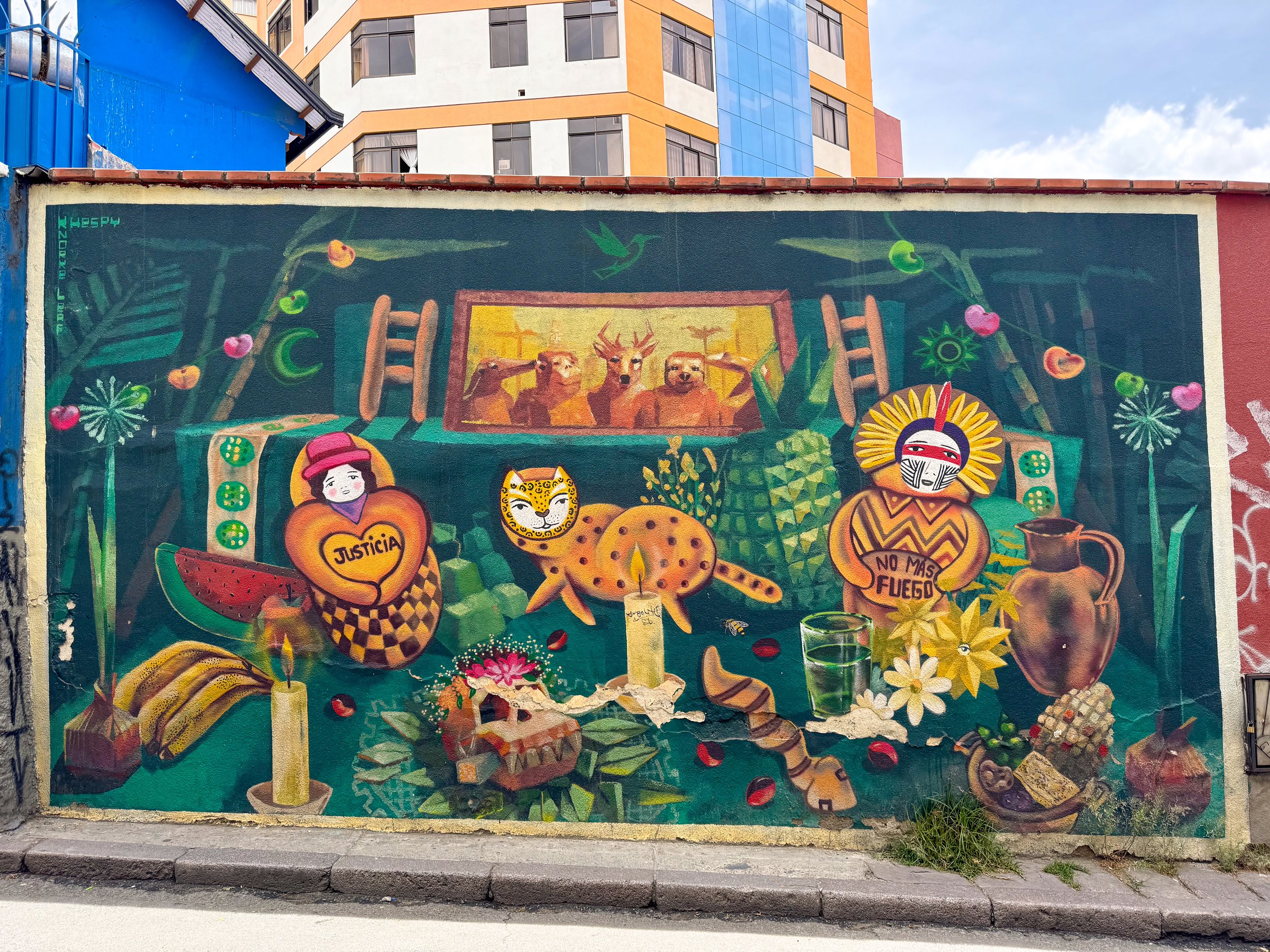
Neighborhoods
Barrio Sopocachi. A bohemian and artsy neighborhood with murals, small parks, cafes & bars. It’s quieter and removed from the central neighborhood.
El Centro. The historic center of La Paz with museums, government buildings, colonial architecture and markets.
Chualluma. A hilly neighborhood with buildings and steep staircases painted in vibrant and pastel colors. It’s viewable on red teleferico line from the Central Station.
Calacoto. A high end residential and business district at the lower end of the La Paz Valley with elegant homes and towering glass skyscrapers.
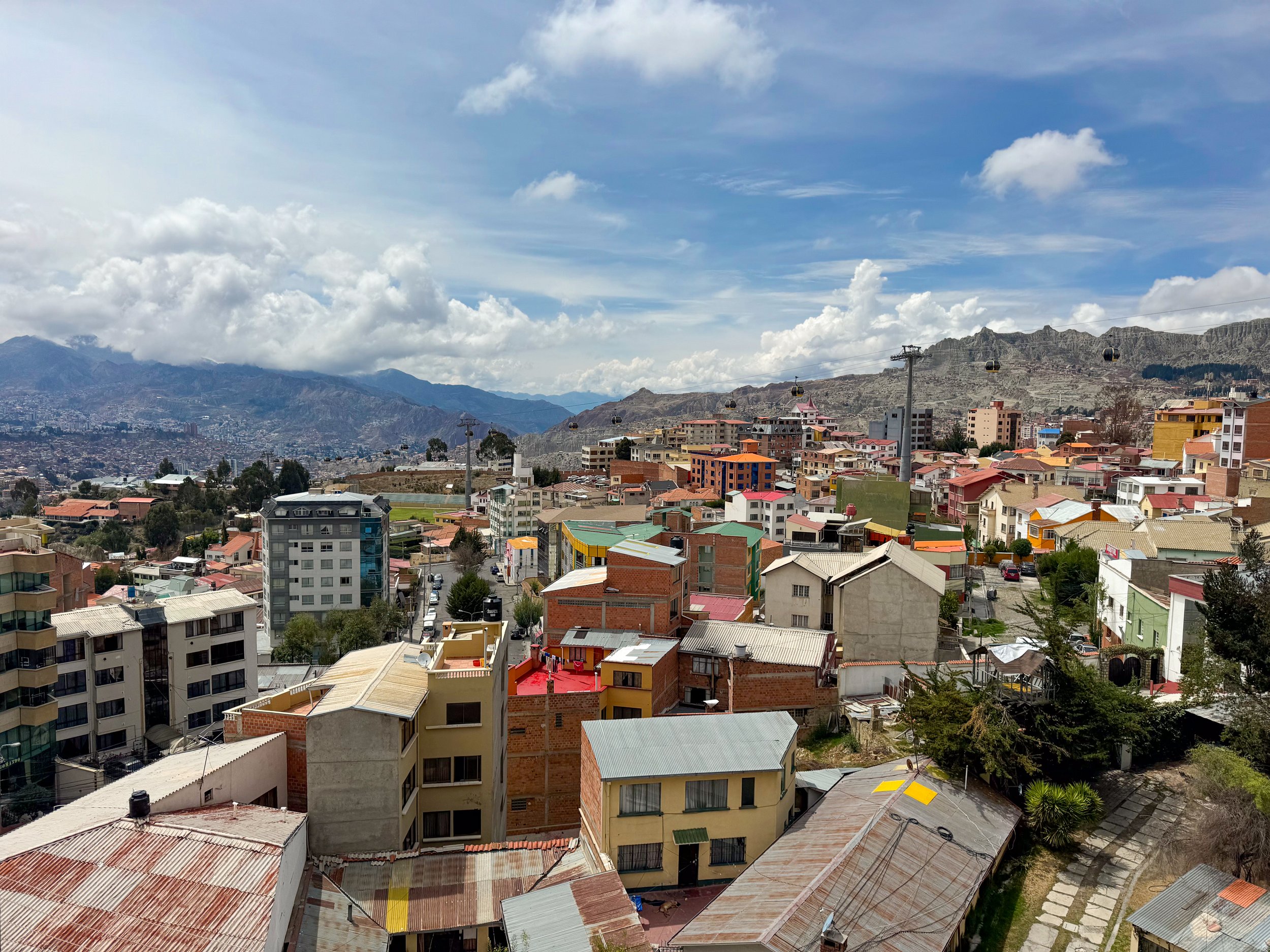
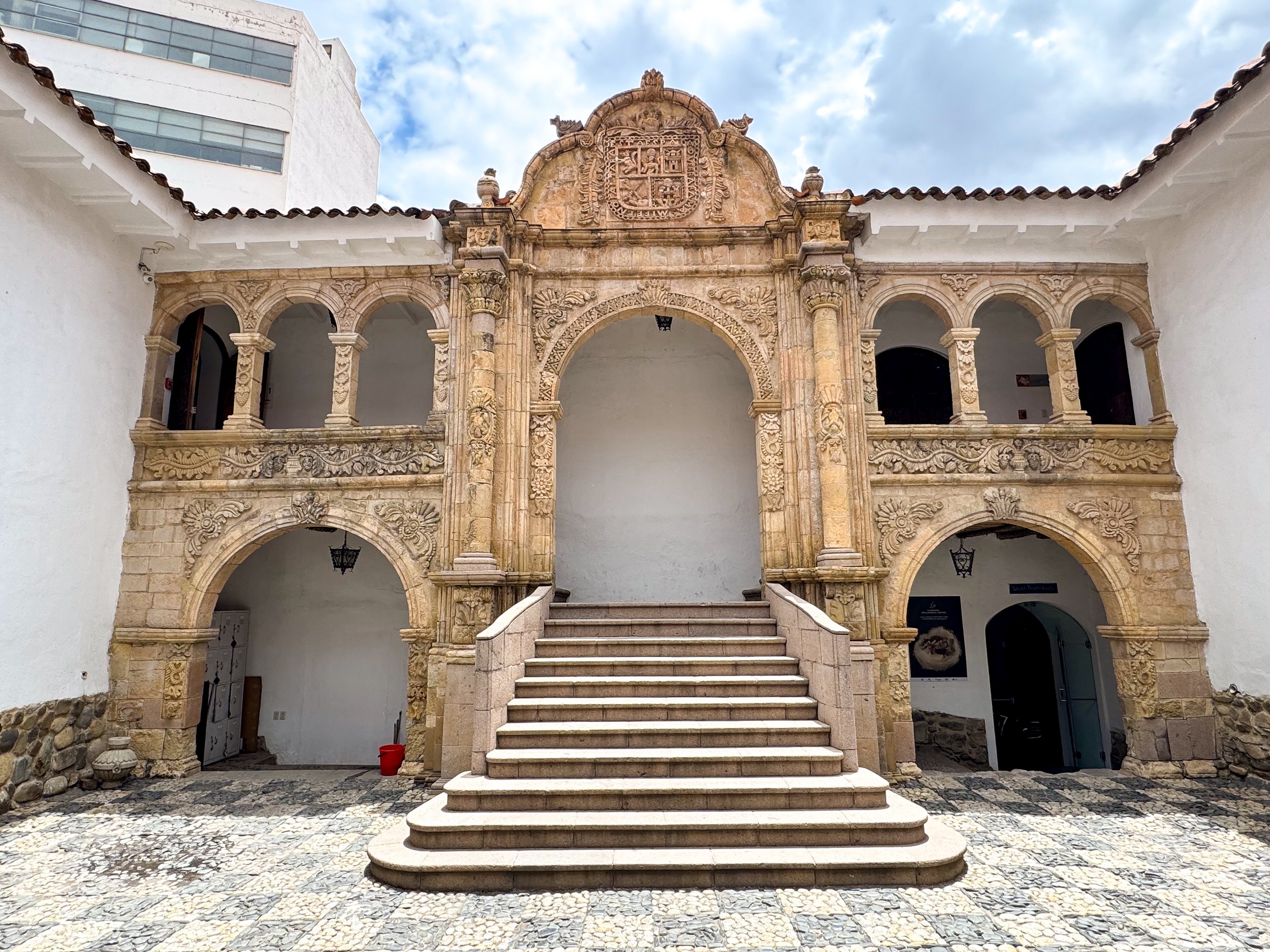
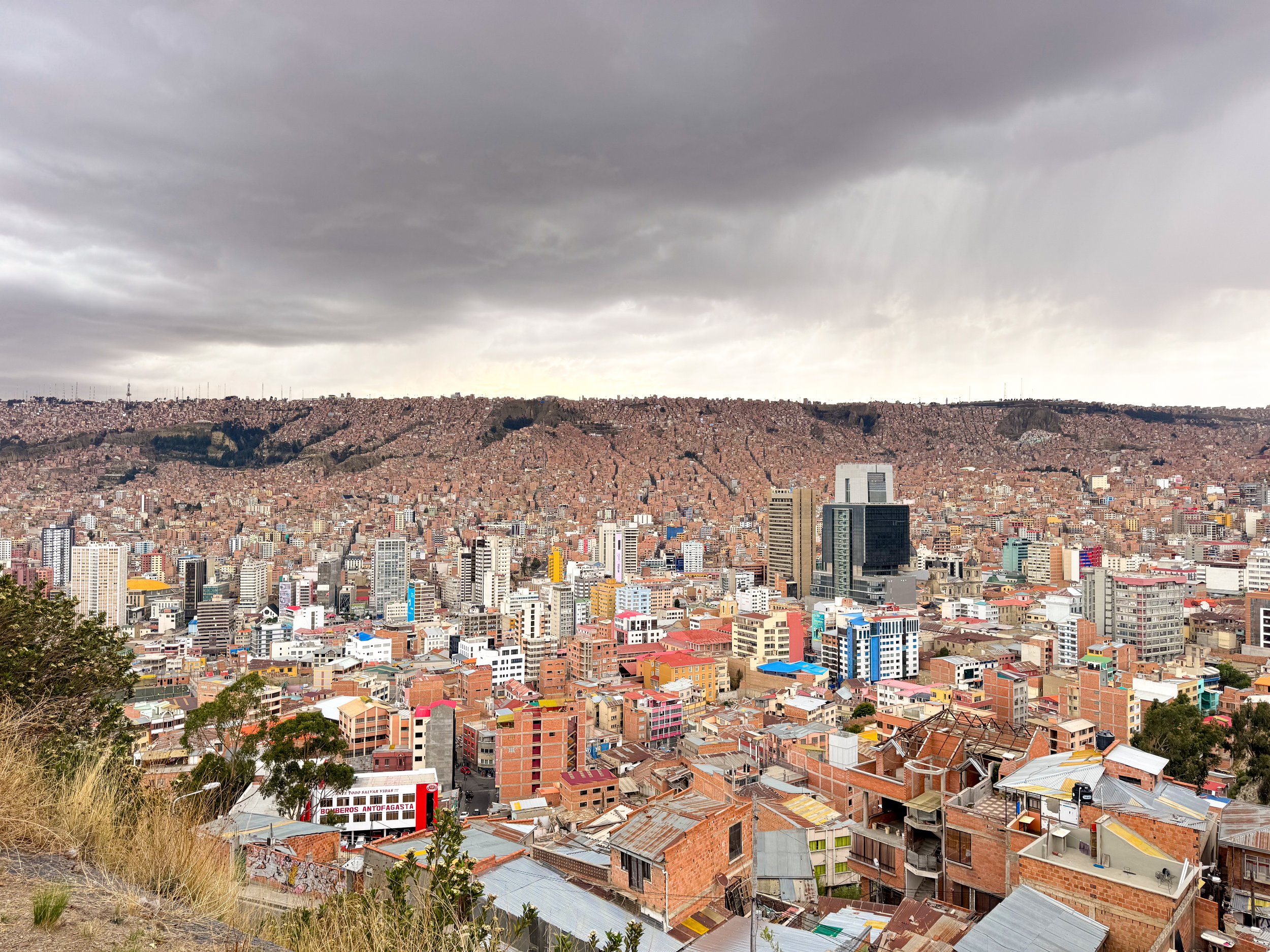
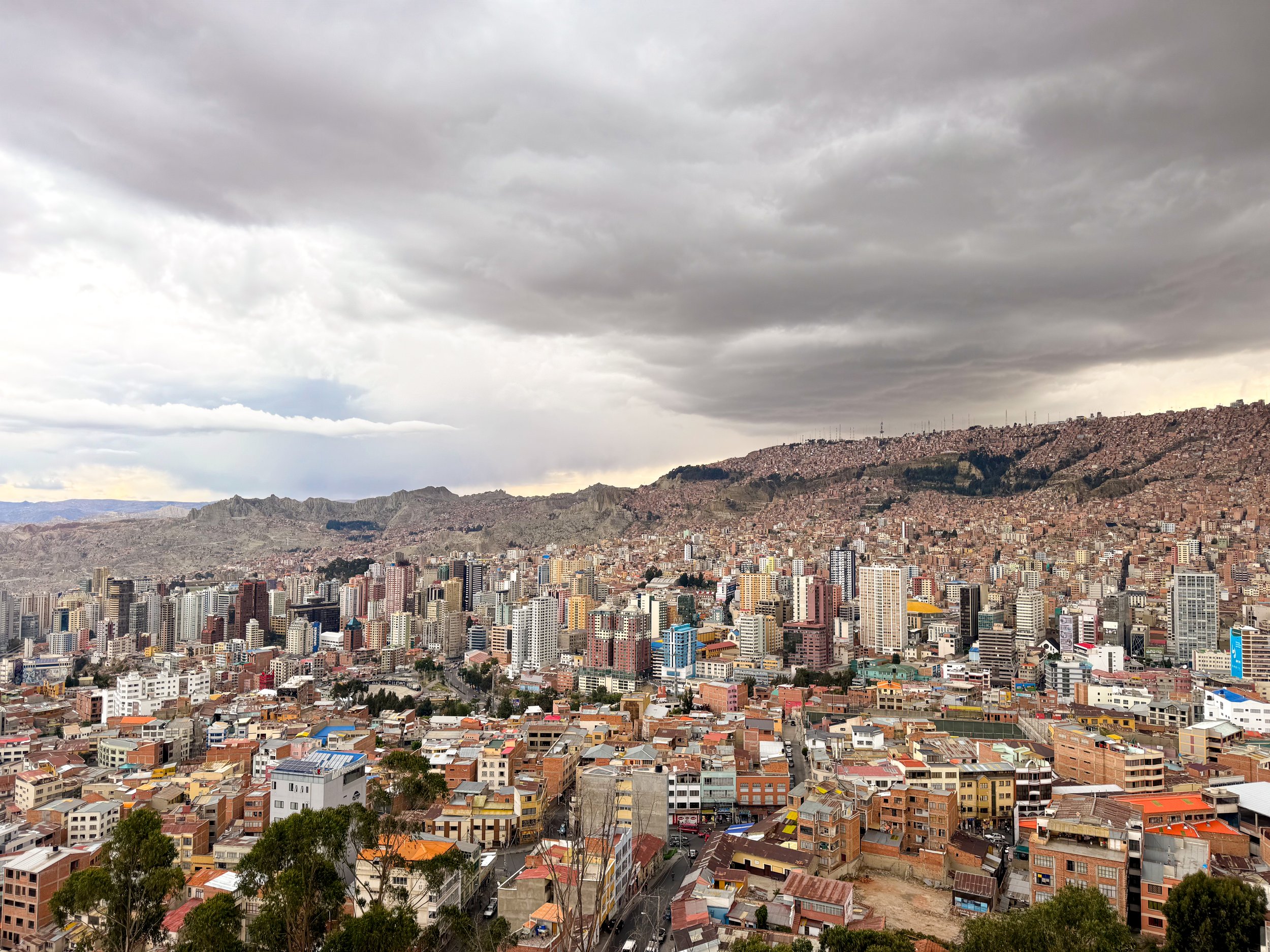

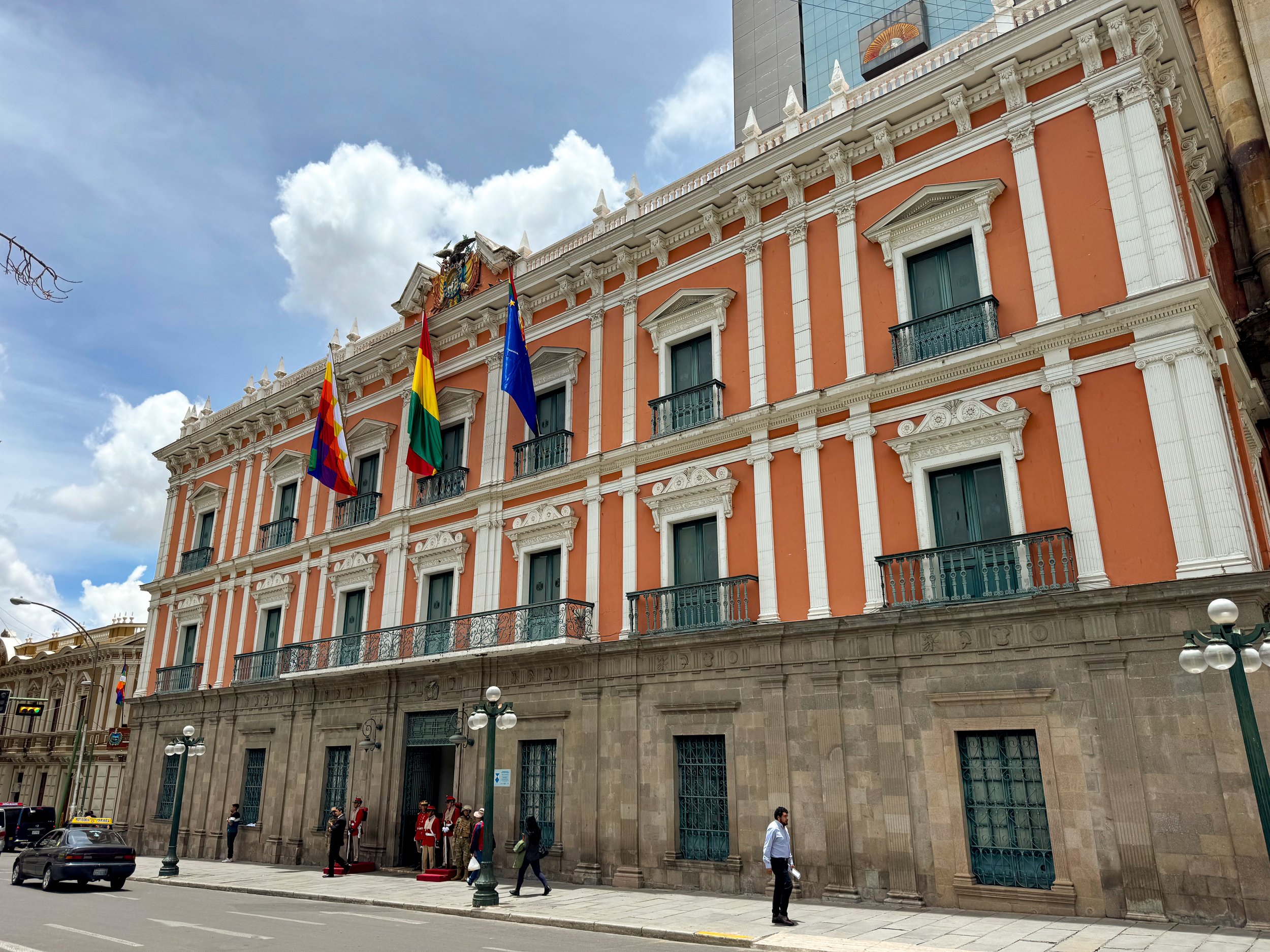
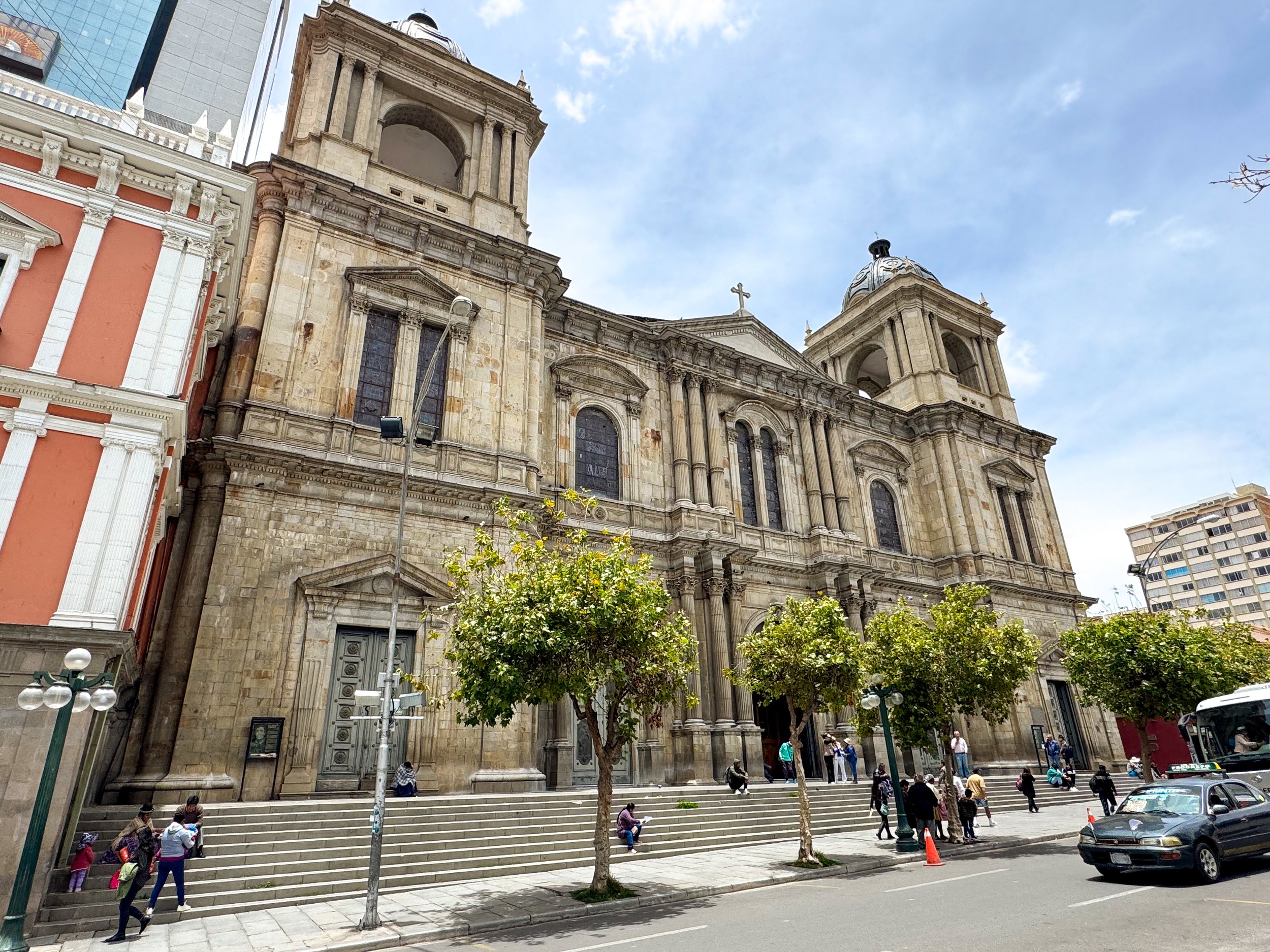
Sights & Museums
Mirador Killi Killi. A lookout in the middle of La Paz with views of the valley and sprawling city crawling up the mountainsides.
Montículo. A peaceful park and lookout in the middle of Barrio Sopocachi with views of the neighborhood, modern skyscrapers, teleferico and mountains.
La Plaza Murillo. A central plaza surrounded by stately buildings flying the Bolivian and Andean flags with a large population of pigeons. Notable buildings include:
The Presidential Palace. A stone and red painted building patrolled by military police presidential guard.
Legislature. A neoclassical building with white marble columns and a backwards clock representative of political change.
Basilica of Our Lady of Peace. A Renaissance style stone cathedral.
The National Museum of Ethnography & Folklore. A museum with exhibits on the use of natural resources by indigenous Bolivians. The exhibits showcase artifacts including ornate textiles, clothing and hats, elaborate feathered headdresses and totems, colorful Indigenous masks, ceramics and metalwork
Plaza Abaroa. We stumbled upon this plaza while wandering through Barrio Sopocachi. At the time, it had a market with vendors selling textiles, jewelry and clothes. We bought crossbody bags embroidered in Bolivian textiles.
Calle Jean. A cobblestone street with colorful colonial buildings, art galleries, small museums and souvenir shops.
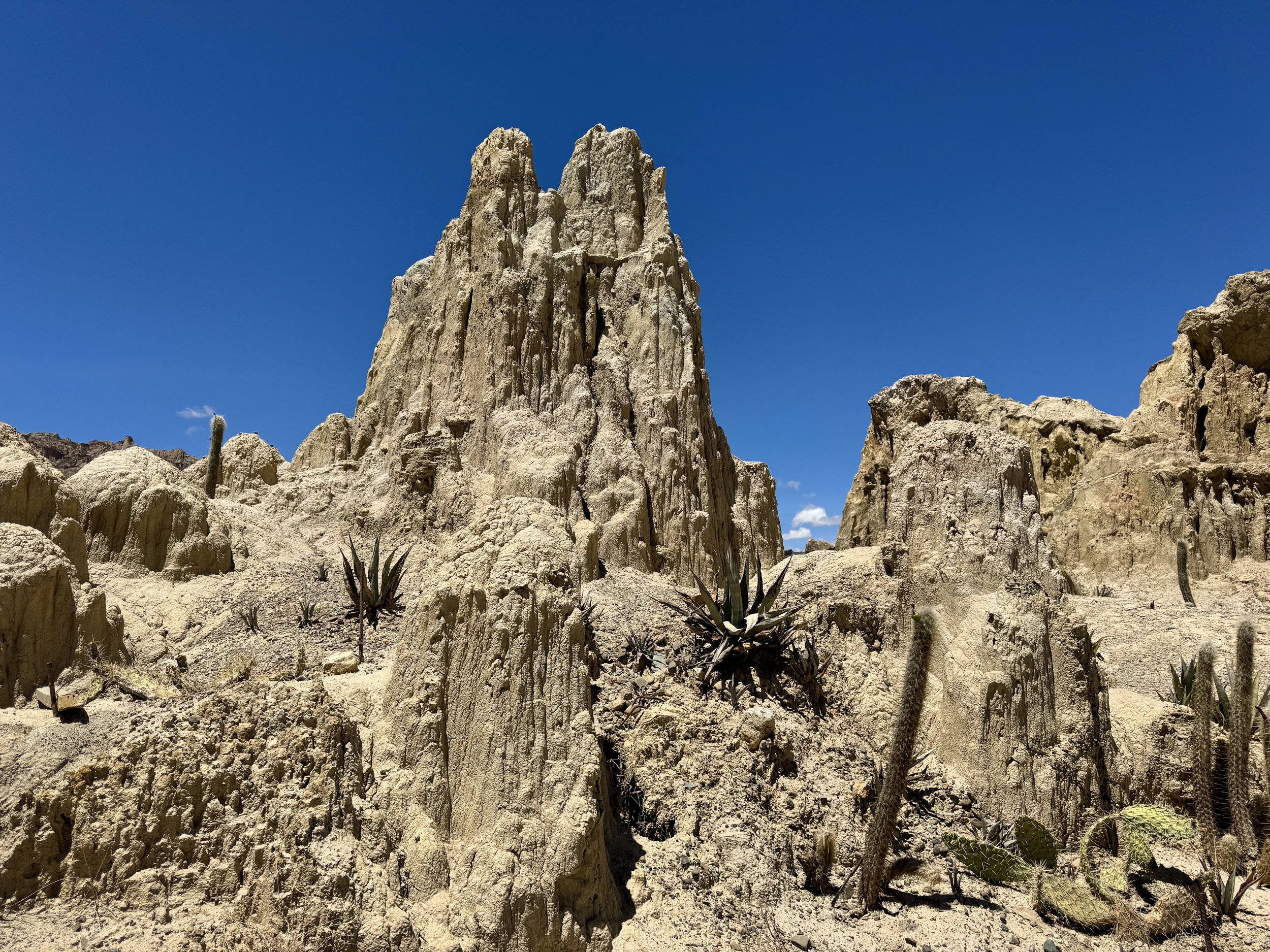

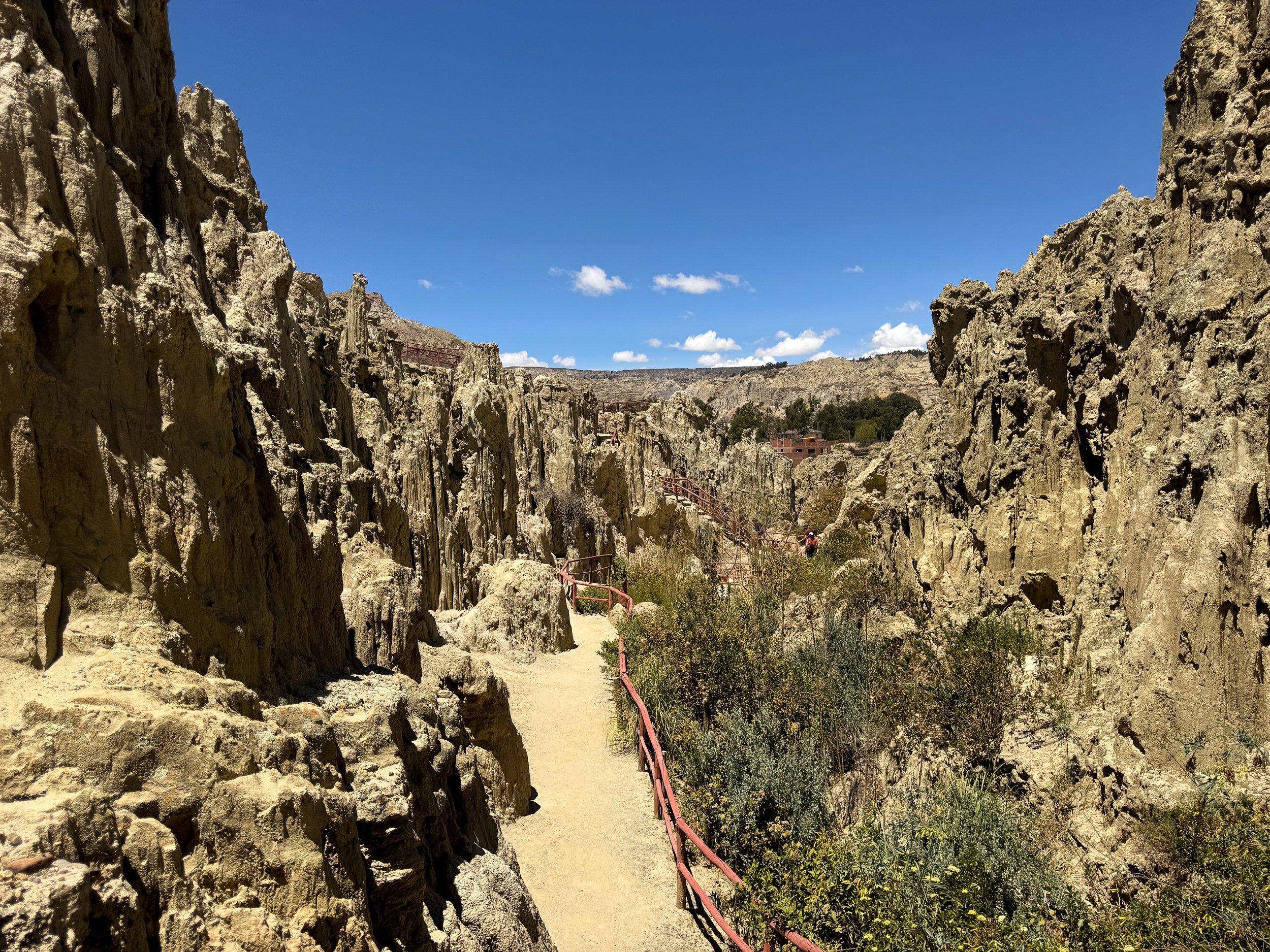
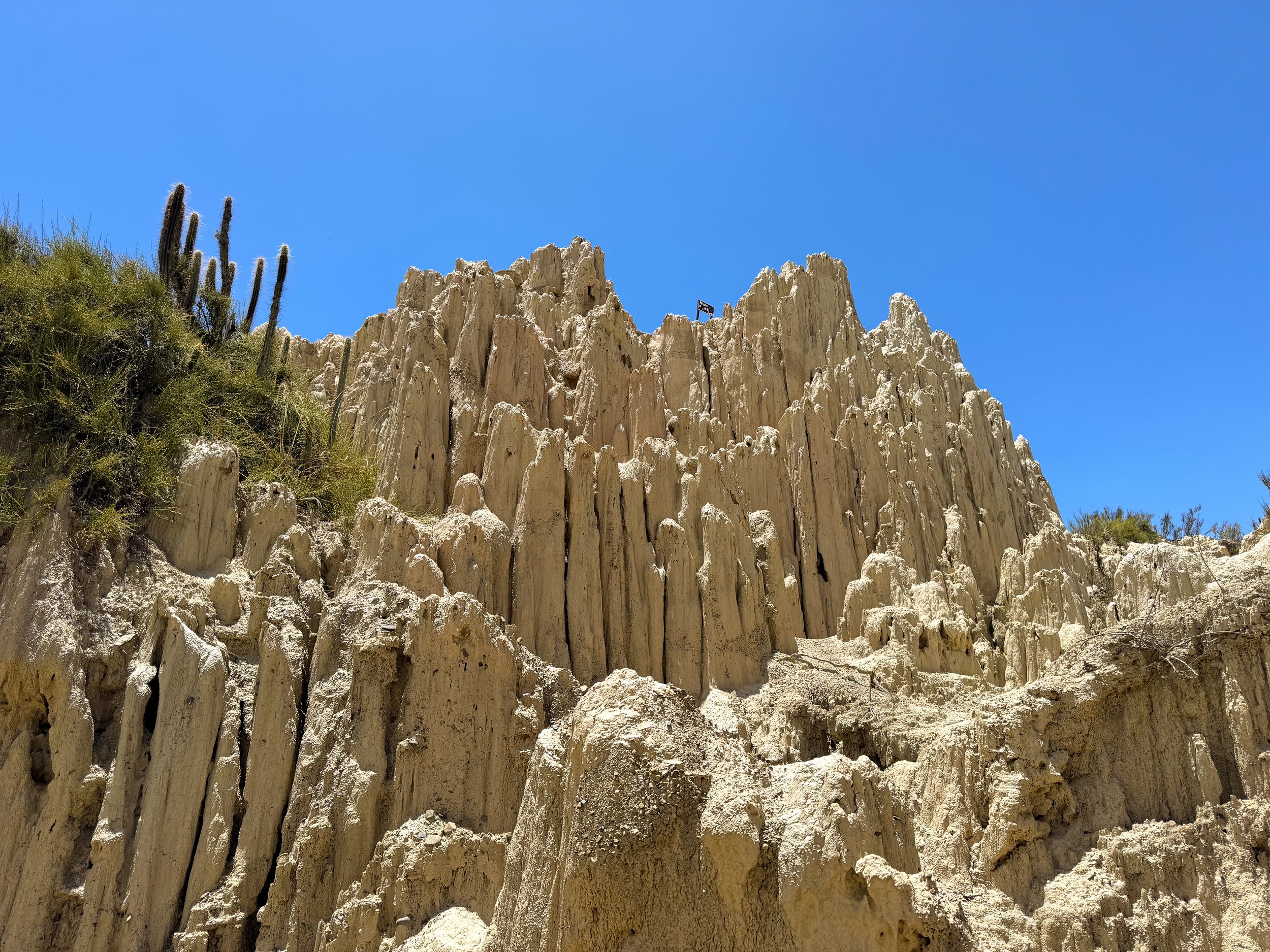
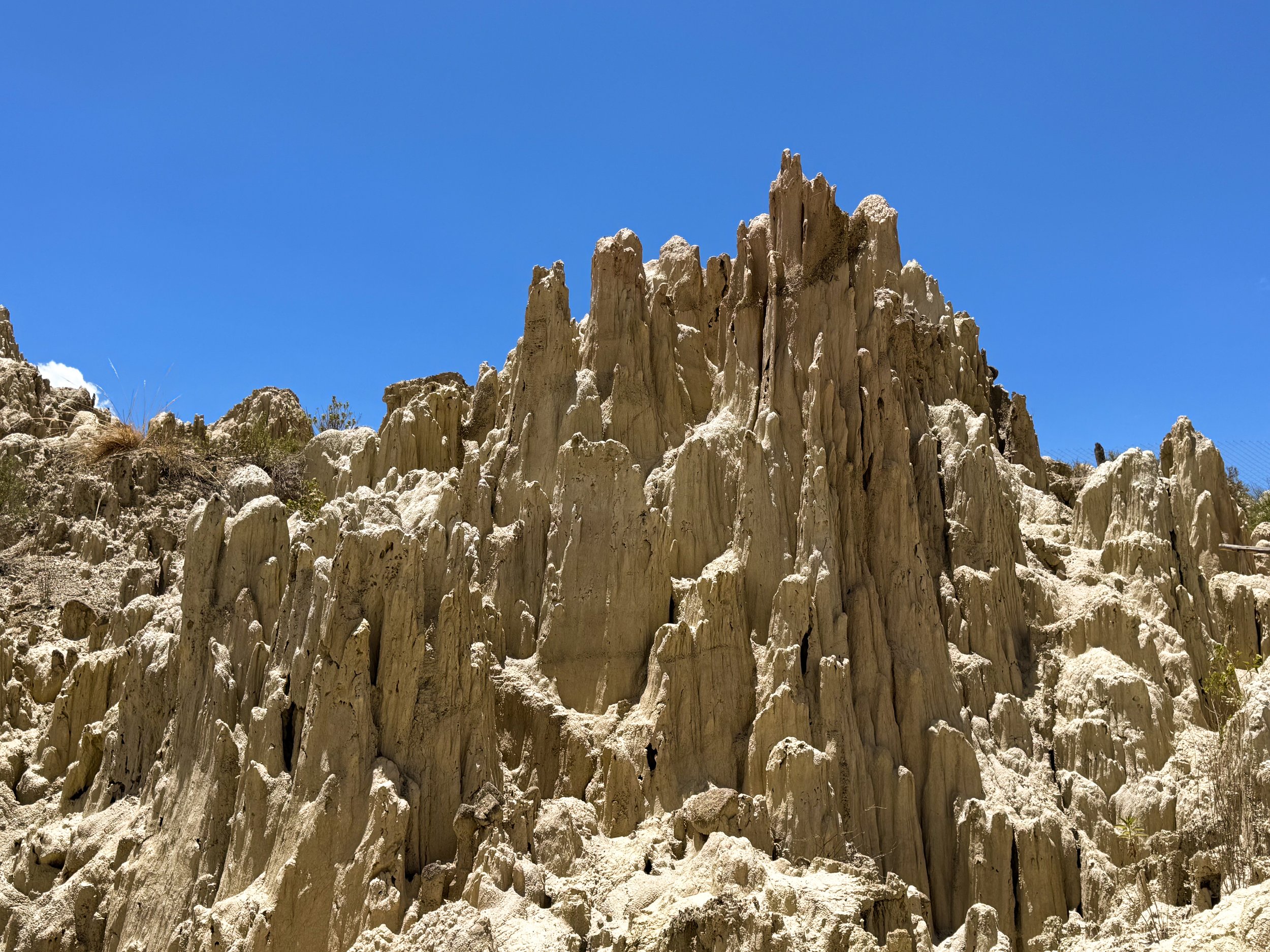
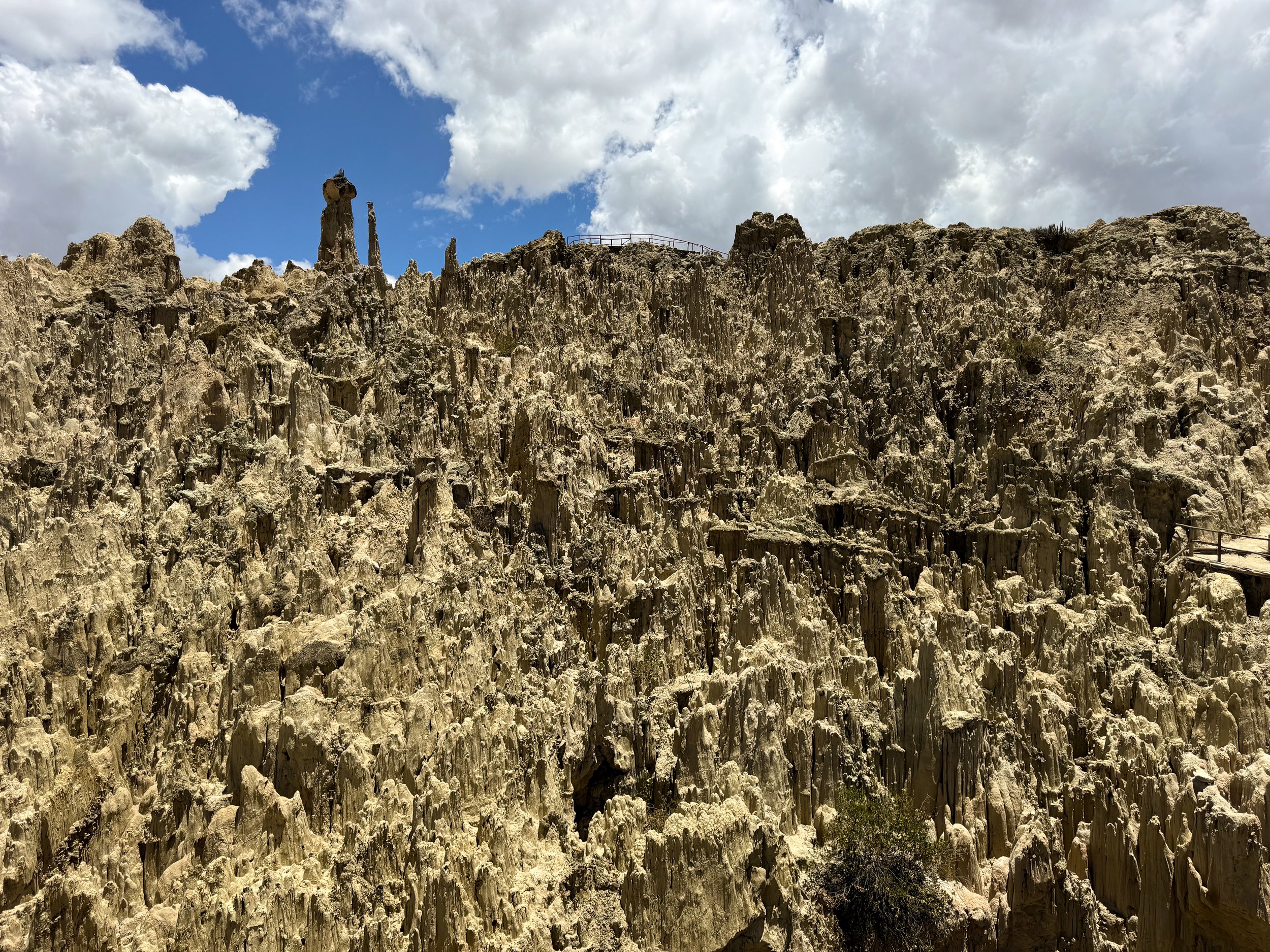
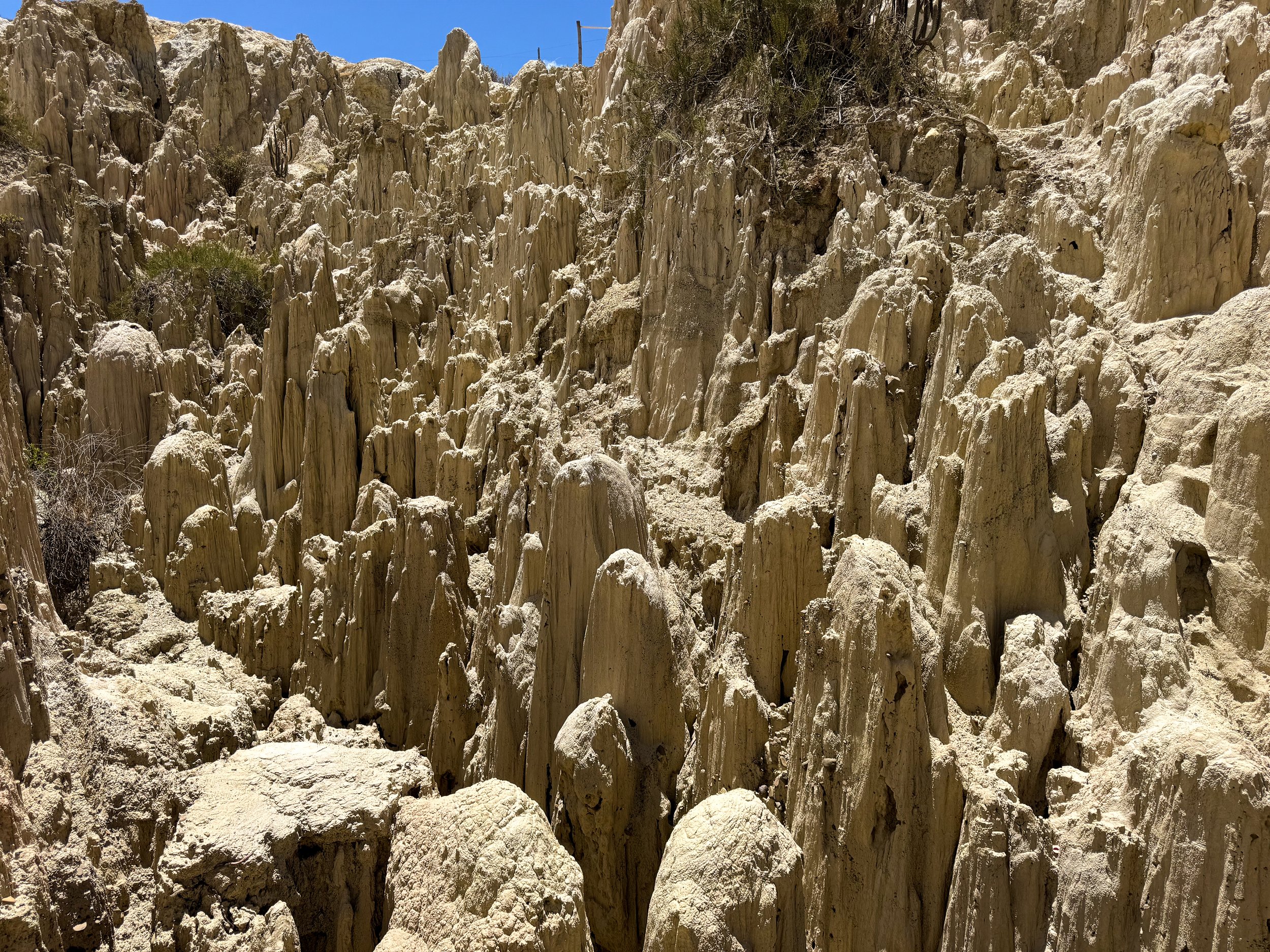
Vallee de la Luna. A nature park just outside of La Paz with trails leading through an otherworldly desert landscape created by eroding rock pillars and jagged geological formations.
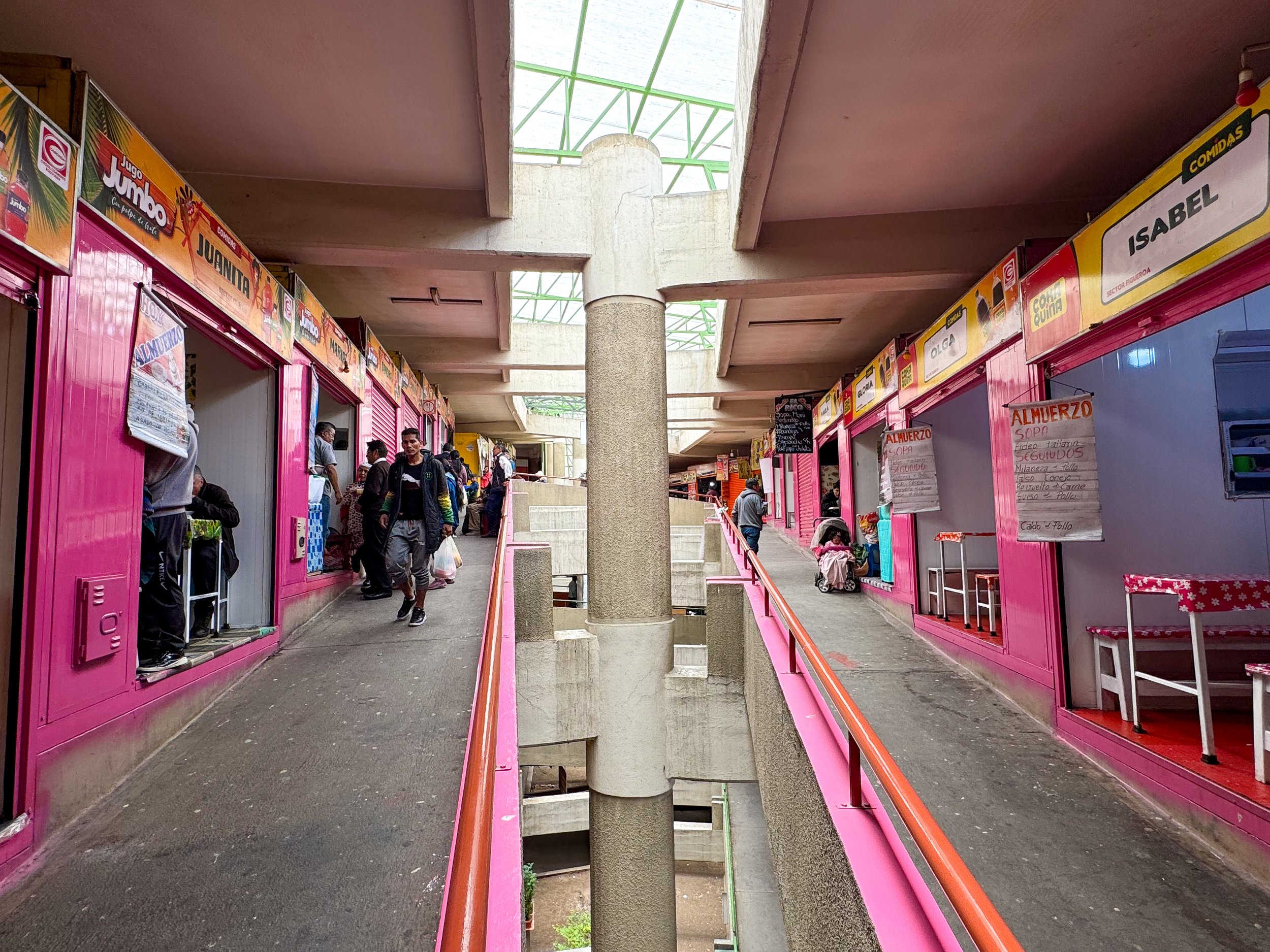
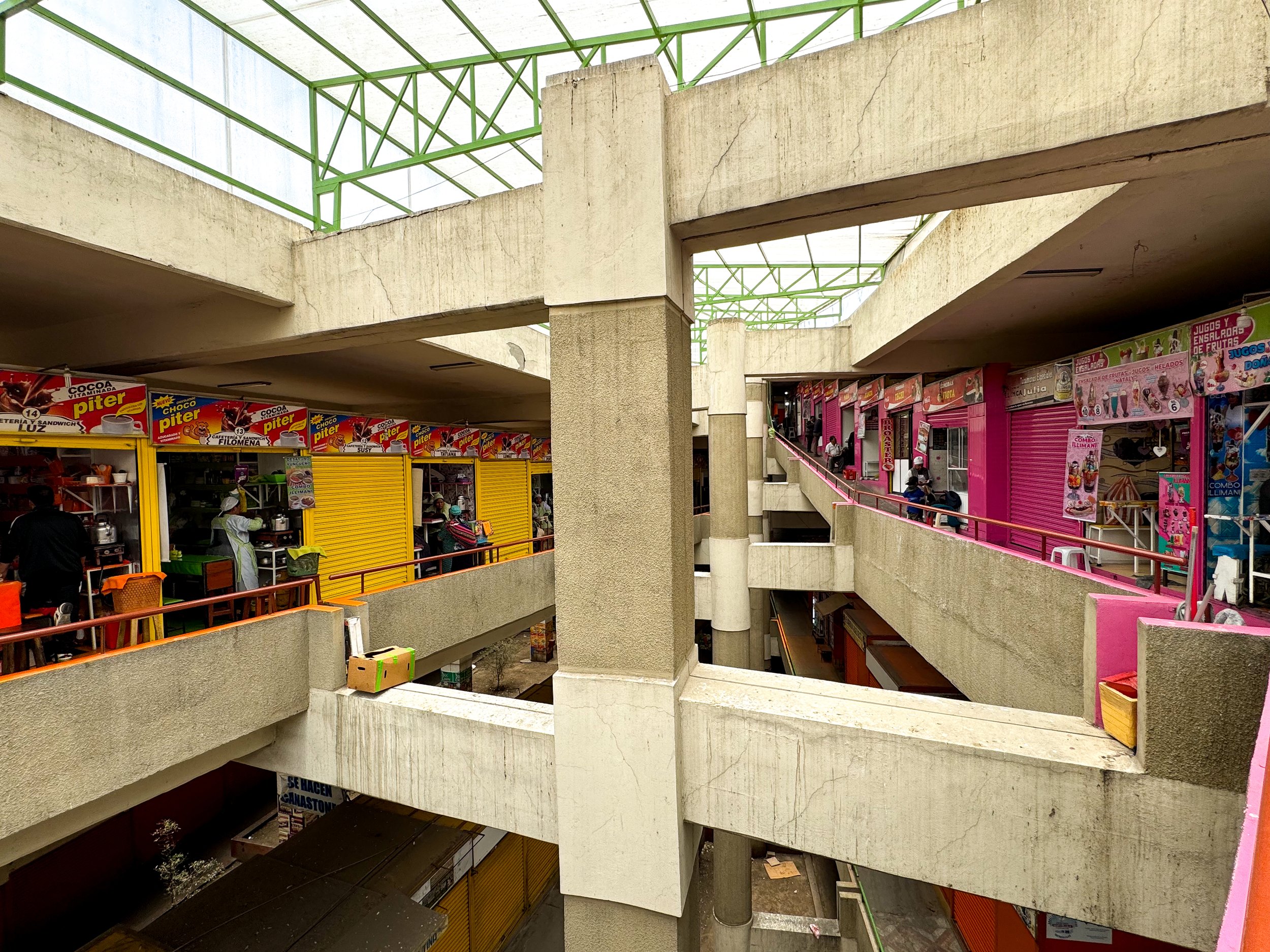
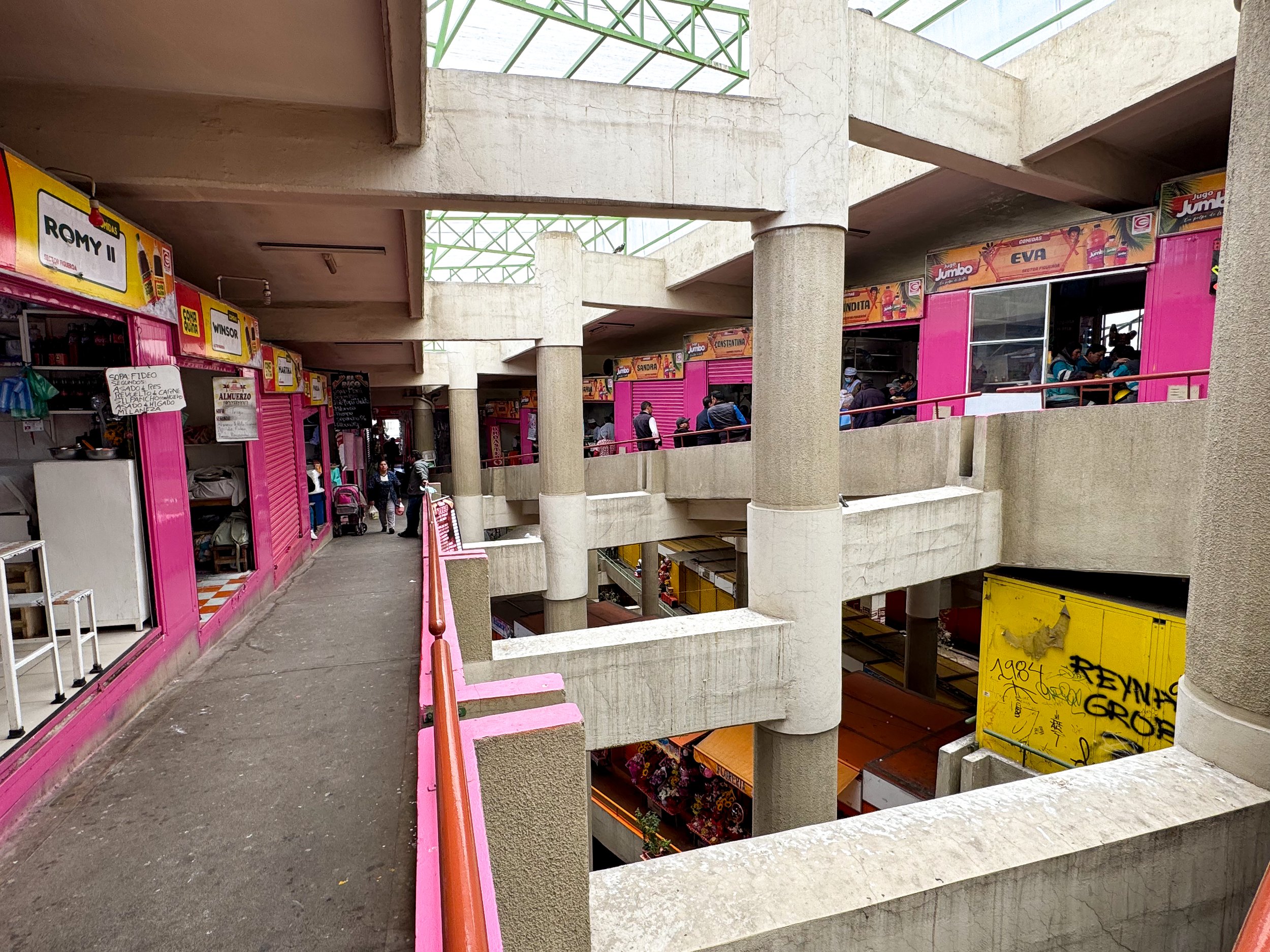
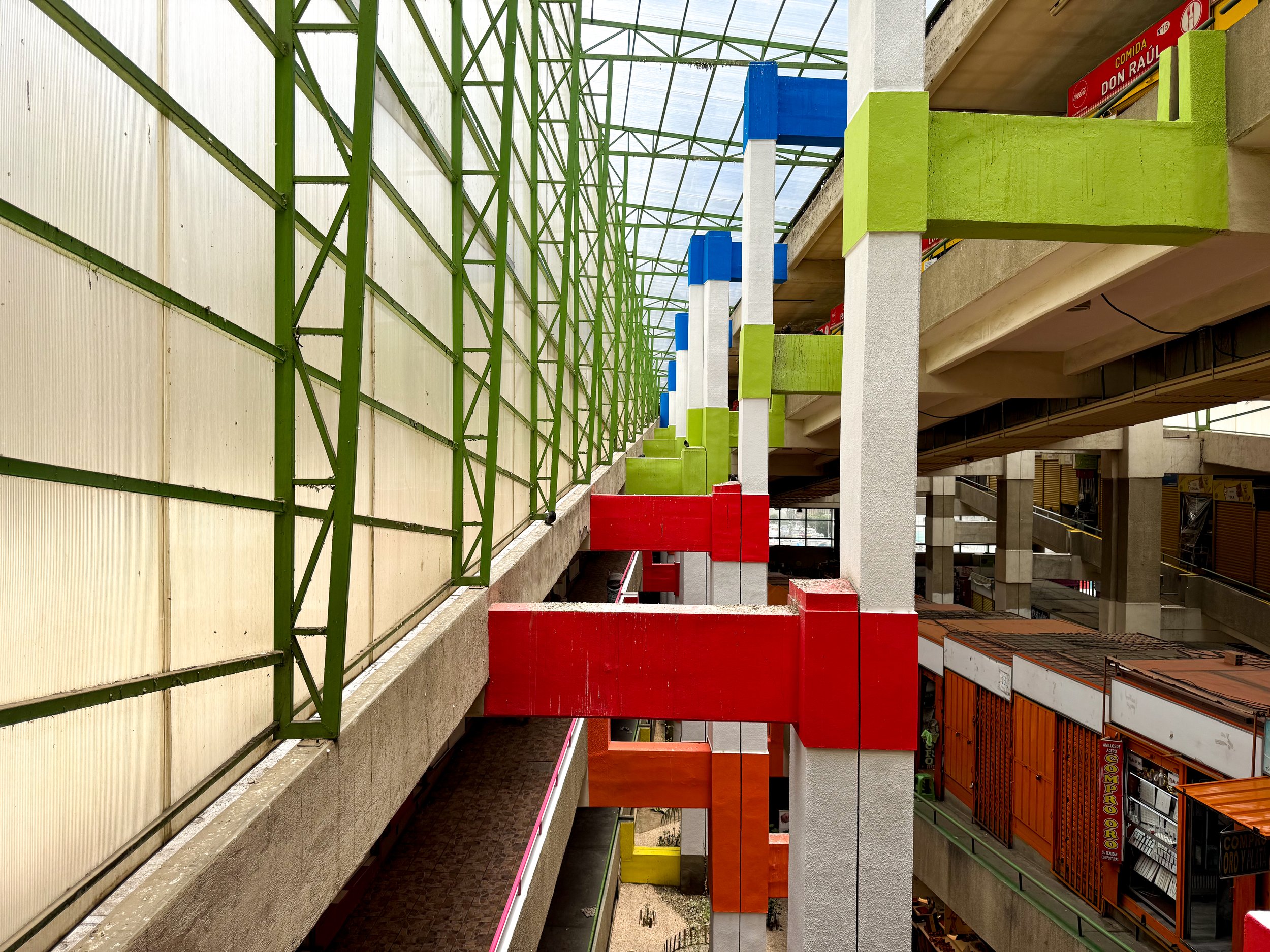
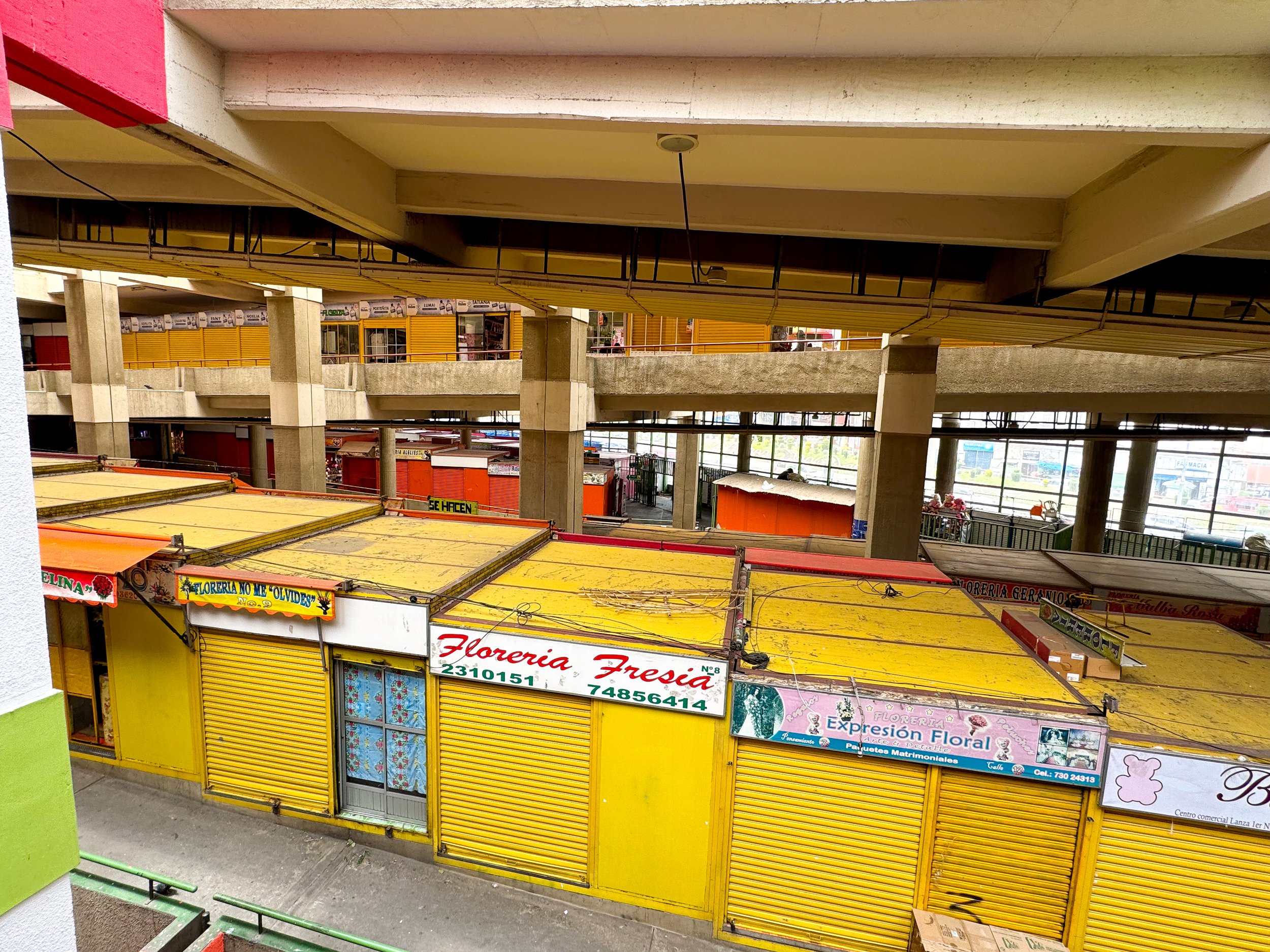
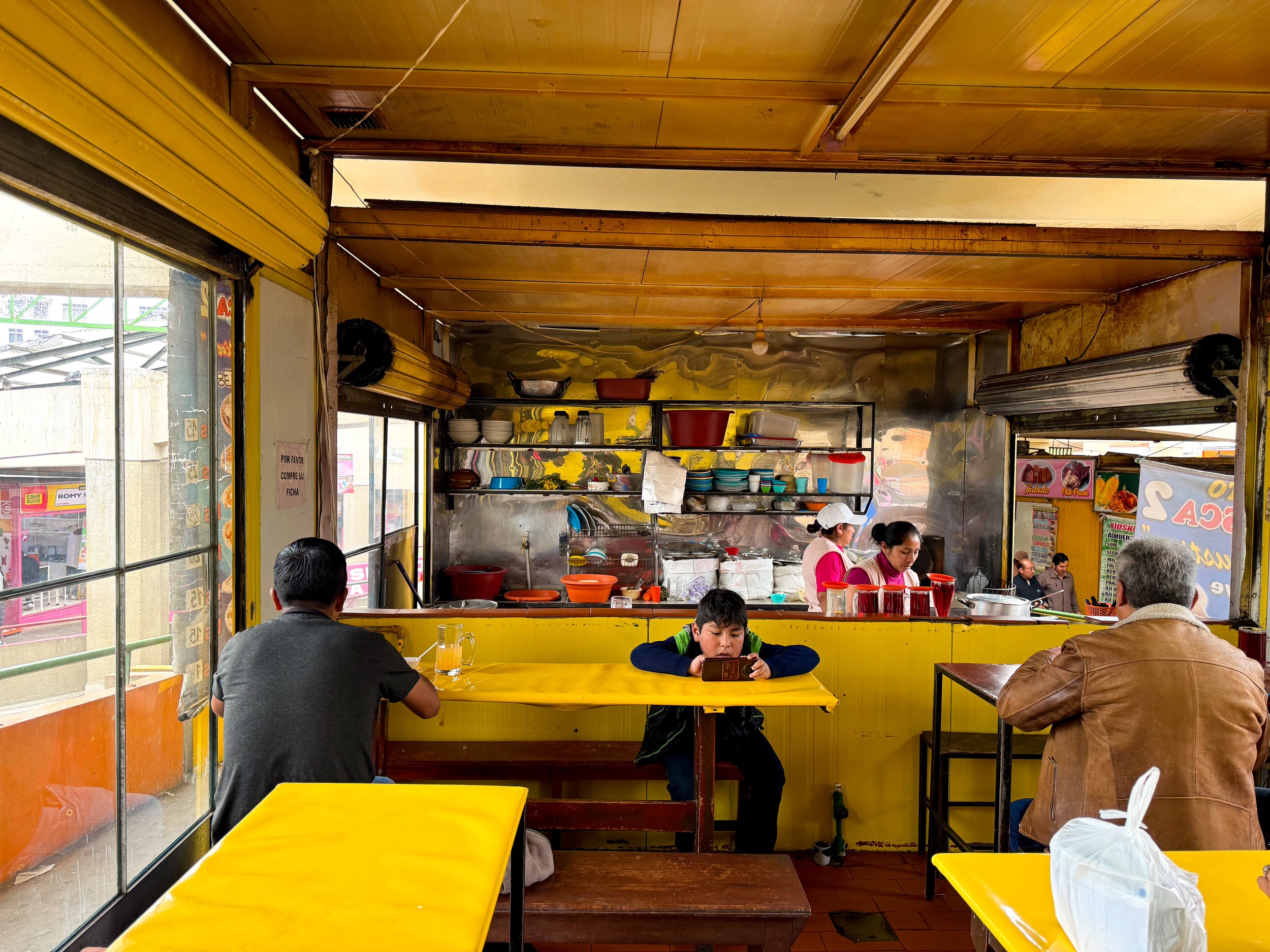
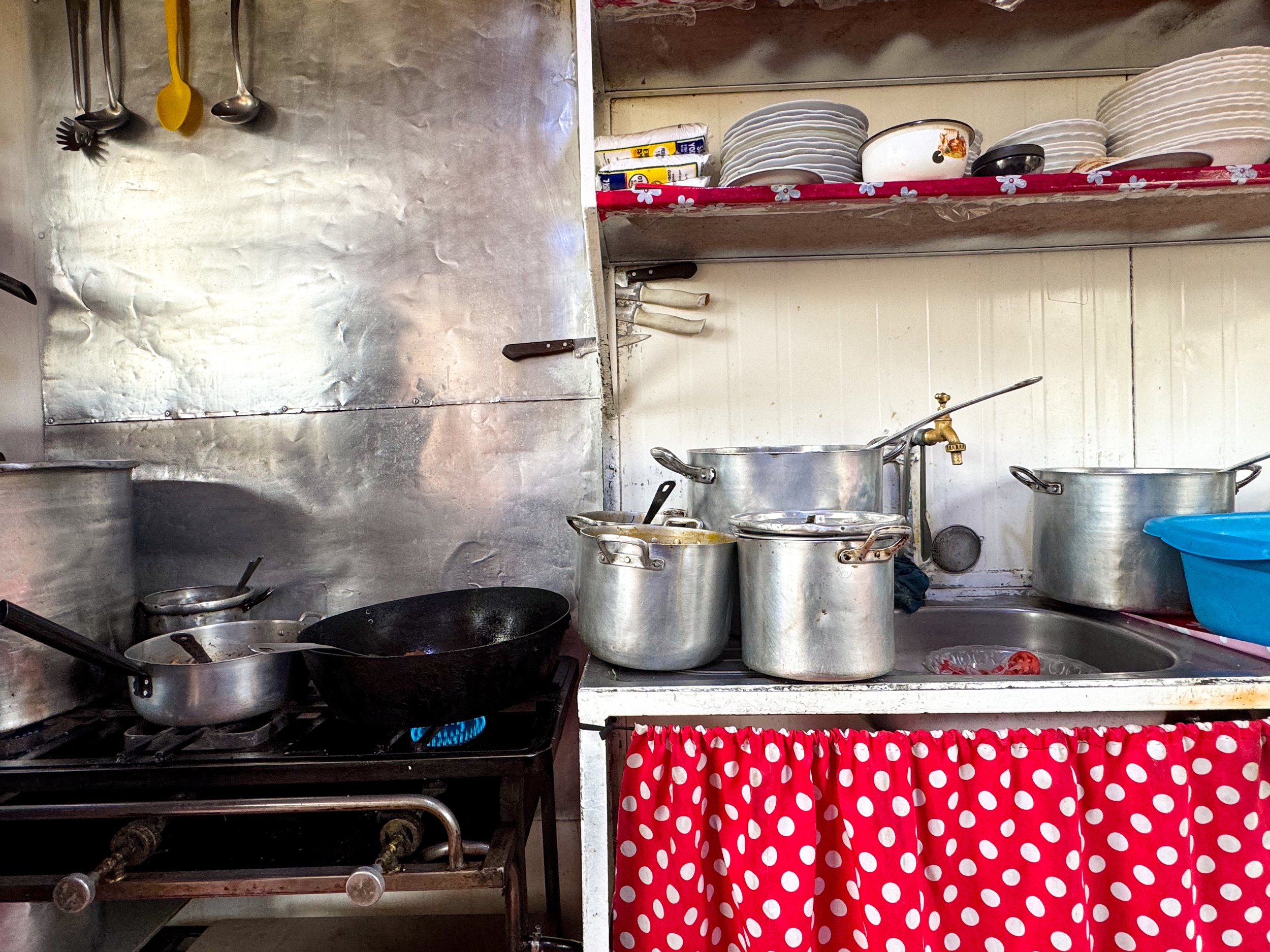
Markets
La Paz has numerous markets across the city in almost every neighborhood. We visited three to shop for grocery’s, eat street food and look for handicrafts.
Mercado Lanza. A maze like market in a brutalist building with levels of intertwining ramps of vendors selling all kinds of inexpensive meals and juices. We wandered between sections as cooks called us into their nooks until finally stopping to eat. We sat down at one vendor’s kitchen for Sopa de Mani (peanut soup) and another for fried Mauri (an Andean fish).
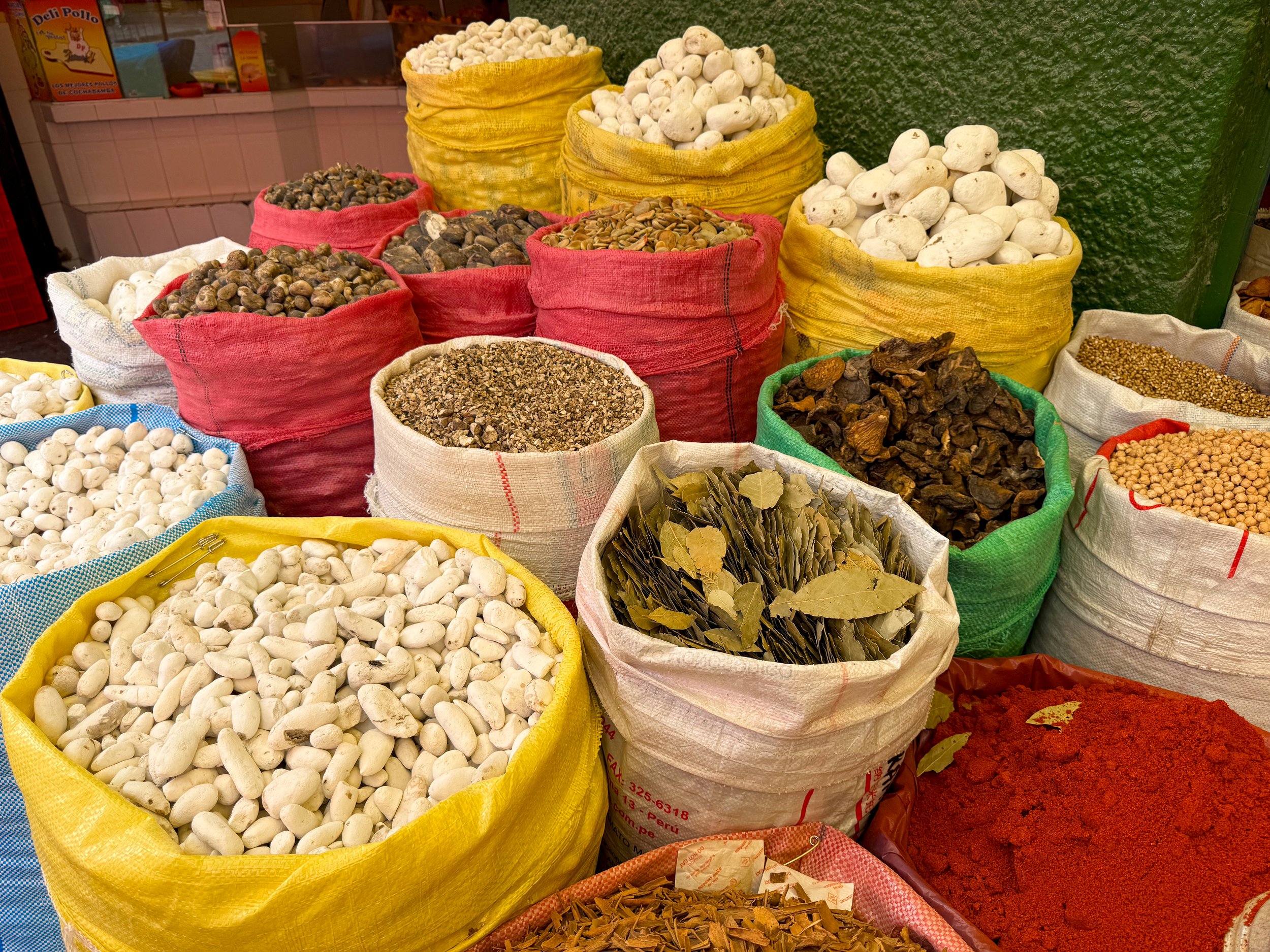
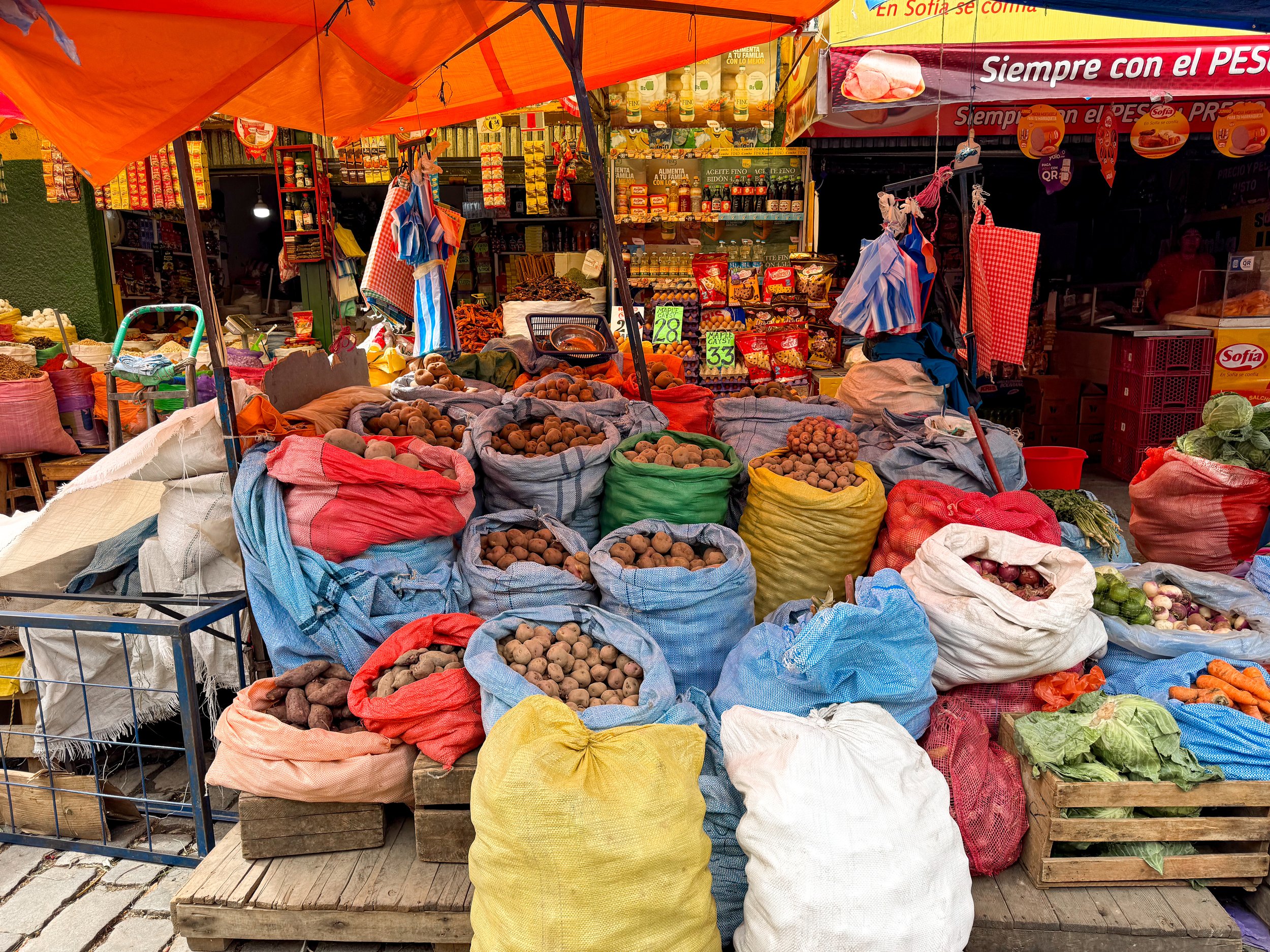
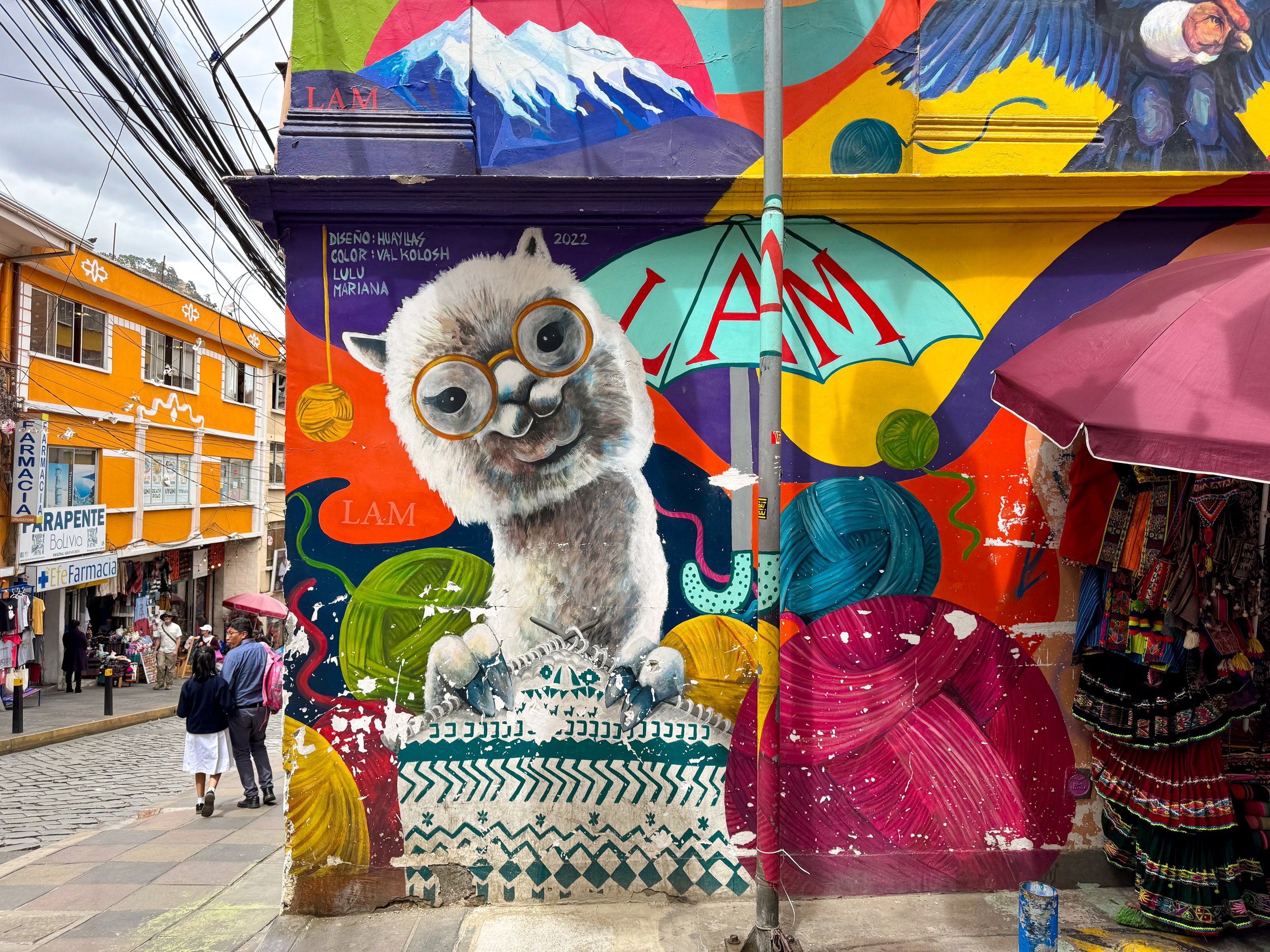
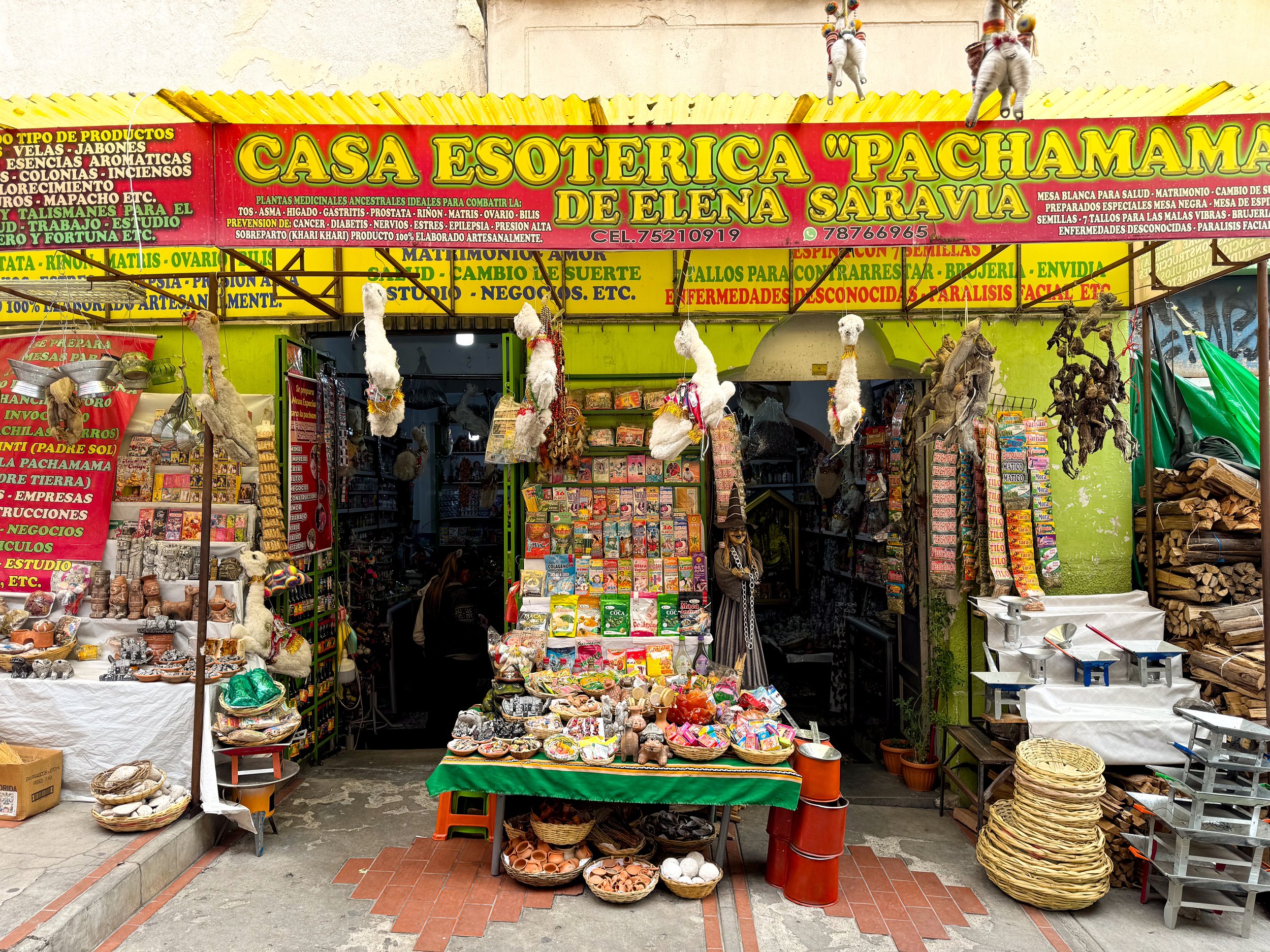
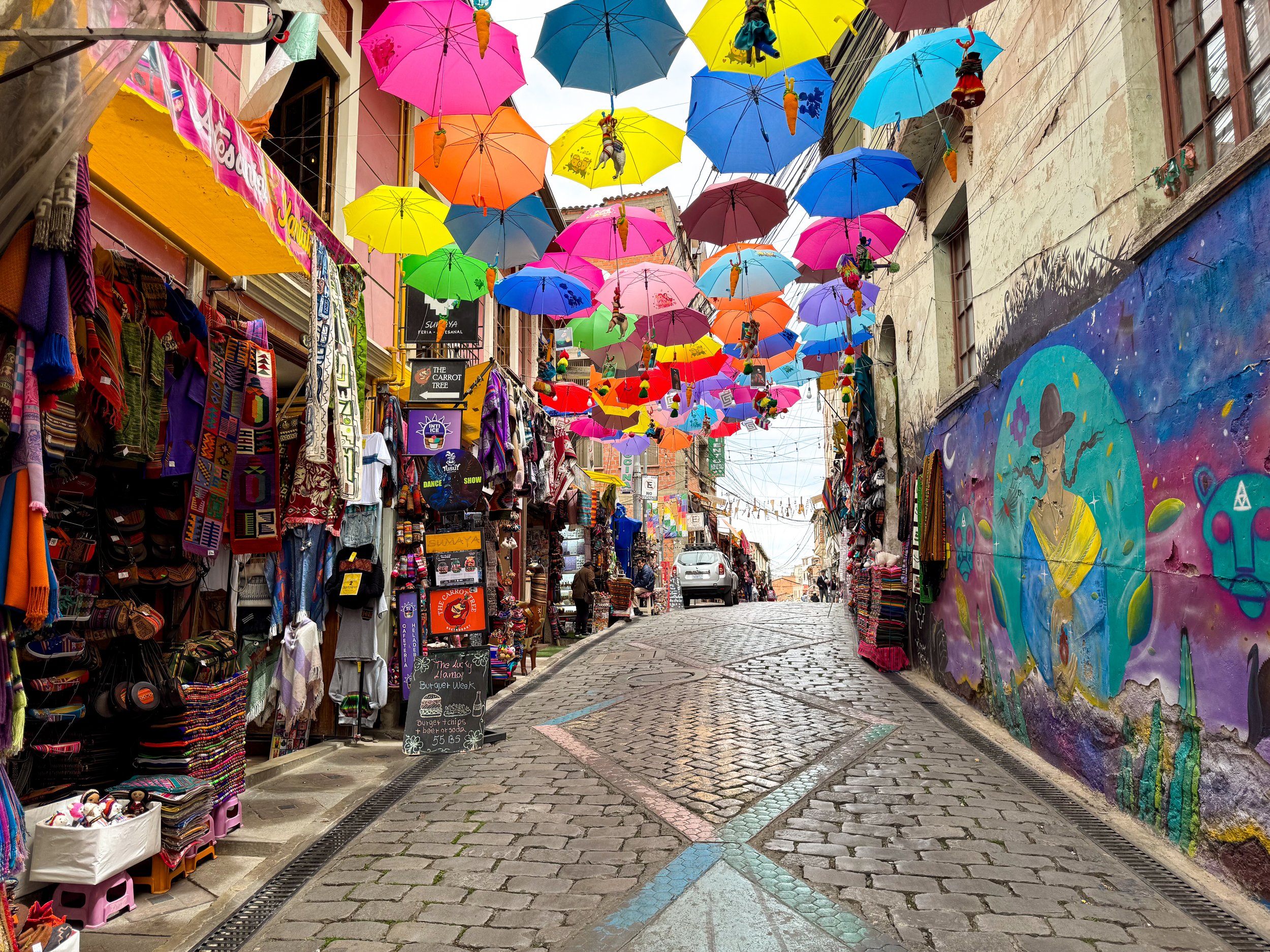
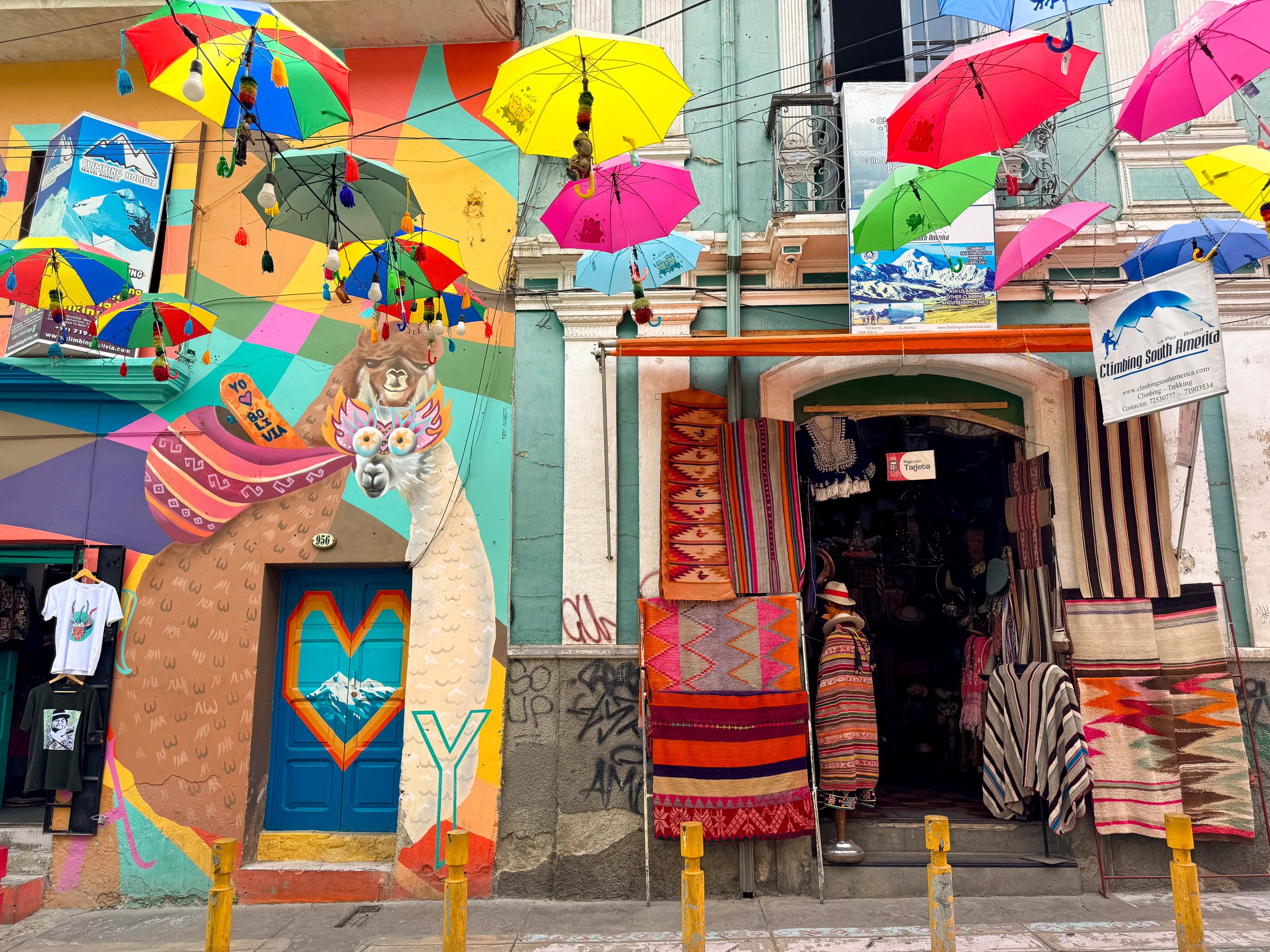
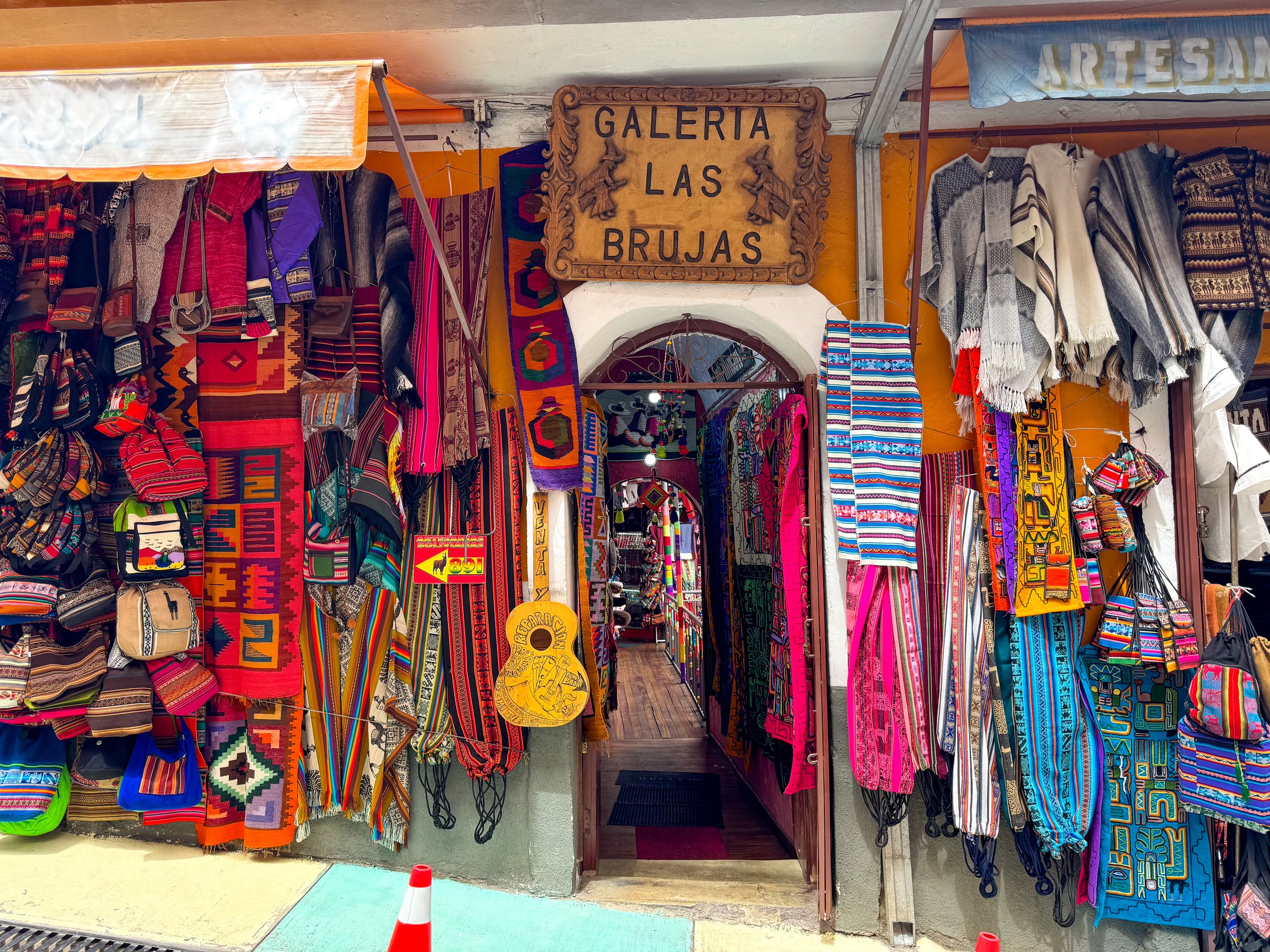
Mercado de las Brujas. A market street covered in upside umbrellas and streamers with vendors selling musical instruments, hand woven textiles, antique indigenous artifacts and all types of machine made souvenirs. One of the draws are the dried llama fetuses and stuffed baby llamas suspended from shops. They’re used as offerings every August to Pachamama (Mother Earth) by the indigenous community.
Mercado Rodríguez. A street market with vendors selling vegetables, fruits, herbs, breads and spices. There is an indoor market for fresh cut flowers and meats.
Where to Eat & Drink
Ali Pacha. A fine dining vegetarian restaurant offering surprise tasting menus blending Bolivian ingredients with international cuisine. We celebrated my birthday here opting for the standard tasting menu paired with Bolivian red wine. Our menu came with a cassava croquette, sourdough breads, fermented quinoa stew, purple corn tacos, quinoa dumplings and two deserts.
Paceña La Salteña. A restaurant chain that bakes the beloved Bolivian street food, Salteña. Any location is a reliable spot to find a vegetarian version.
Cielo Bar. A high end feeling cocktail bar in the 38th floor of Bolivia’s tallest building with views of the city and mountains. We came here for drinks at sunset!
El Bestiario. A bohemian style and queer friendly bar that specializes in gin cocktails made from their house gin. We met up with new friends here, sipping on incentive concocterions and classics like the Negroni. Try the Llamero Solitario, an aromatic gin cocktail made with a heavy garnish of Andean herbs or the Api Love made with purple corn.
Retrato Cafe. A cozy cafe in Sopocachi that feels more like someone’s house than a coffee shop. We came here for Bolivian coffee and breakfast dishes.
Hb Bronze Coffee Bar. A romantic coffee bar with table side and candlelight coffee preparation of your choice. They specialize in geisha coffee, coffee infused cocktails and wines.
Eli’s Pizza. A restaurant in an old train car at the Central Station with pizzas and salteñas, including vegetarian options.
Friddo. An ice cream cart at the Central Station serving Bolivian flavors like dulce de leche, mocha, cherimoya and tumbo.
What to Eat & Drink
From street food to contemporary cuisine, La Paz is a gastronomic hub for Andean and Amazonian flavors.
Salteñas. A savory Bolivian pasty that’s a cross between a baked empanada and a soup dumping. A semi-sweet dough that caramelizes along the crimped edges filled with stewed meats or veggies and a sauce containing Andean spices. They’re often served from morning through mid-afternoon.
Plato Paseño. The national dish made from choclo (corn), potatoes and habas (large green beans) boiled with anise, served with grilled Andean cheese and a portion of meat.
Sopa de Mani. A vegetarian soup made from peanuts, veggies and noodles. It’s often served with a side of a spiced herb sauce.
Trucha. Trout from Lake Titicaca or other Andean bodies of water. It’s often served while, either pan fried in butter and spiced or breaded and deep fried.
Cuñape. A cheesy bread ball made with queso fresco and mozzarella. It’s similar to Brazil’s pao de queijo.
Tropical Fruits. A majority of Bolivia is within the Amazon which supplies the country with an array of tropical and exotic fruits. Some include, tumbo, cherimoya, mango, kiwi, banana, avocado and papaya are common.
Pasankallas. A snack similar to popcorn made from large corn kernels that have been dried, puffed and then coated with sugar, salt or other spices.
Paceña. A classic pilsner and Bolivia’s national beer.
Ch’Ama. A craft beer made with coca leaves.
Chuflay. A traditional Bolivian cocktail made from singani, a distilled grape liquor, a soda such as sprite or ginger ale and sliced of lemon served on the rocks.
Getting Around
Mi Teleferico. A transit network of cable cars used to get around the city. It’s by far the best way to get around La Paz and sight see. There are several different color coded lines that connect the city, cross valleys and reach into the mountains, each with unique aerial views of the city and Andean landscape. We purchased a rechargeable card to share with fares costing a couple Bolivar per ride.
By Uber. For distances not reachable by the Teleferico, we took Ubers to get around. They are readily available and inexpensive.
Good to Know
Cash vs Card: Cash is most commonly accepted. Very few places accept debit or credit card
Currency: The Bolivian Bolivar is the only accepted currency however US dollars can be exchanged for rates higher than the accepted rate.
Altitude: La Paz is the highest capital city in the world at an altitude of 12,000ft above sea level. It you haven’t acclimated, it can be tiring and different.
UV Protection: With the high altitude, the UV is significantly harsher than at sea level. Pants, long sleeves, sunglasses and broad spectrum sun block is necessary not to burn.
Water: The tap water is unsafe to drink, even if boiled. It’s often contaminated with heavy metals by run off from nearby mines. Drink filtered or bottled water only.
LGBTQ+ Safety: Bolivia is increasingly accepting of LGBTQ travelers though it’s not common to display PDA.
For Next Time…
During our 3 days in La Paz, we spent our time exploring the city and tasting the cuisine. With more time, we would venture out to an archeological complex and the Amazon.
Tiwanaku Archaeological Complex. The ruins of a pre-Incan civilization’s capital with the stone walls, a large gate, statue and plazas. It’s located 2 hours south of La Paz.
The Bolivian Amazon. The sprawling South American Rainforest is located on the other side of the Andes less than 2 hours by car from La Paz.
The Atacama Desert
The Atacama Desert is driest place on the planet with an aired landscape comprised of countless volcanos, erupting geysers, rocky valleys, jagged mountains, gargantuan sand dunes, vast salt flats, vibrant lagoons, spiraling dust devils and small desert towns.
Atacama, Chile
The Atacama Desert is driest place on the planet with an aired landscape comprised of countless volcanos, erupting geysers, rocky valleys, jagged mountains, gargantuan sand dunes, vast salt flats, vibrant lagoons, spiraling dust devils and small desert towns. From the adobe town San Pedro de Atacama, we ventured into the remote landscapes of the Atacama Desert.
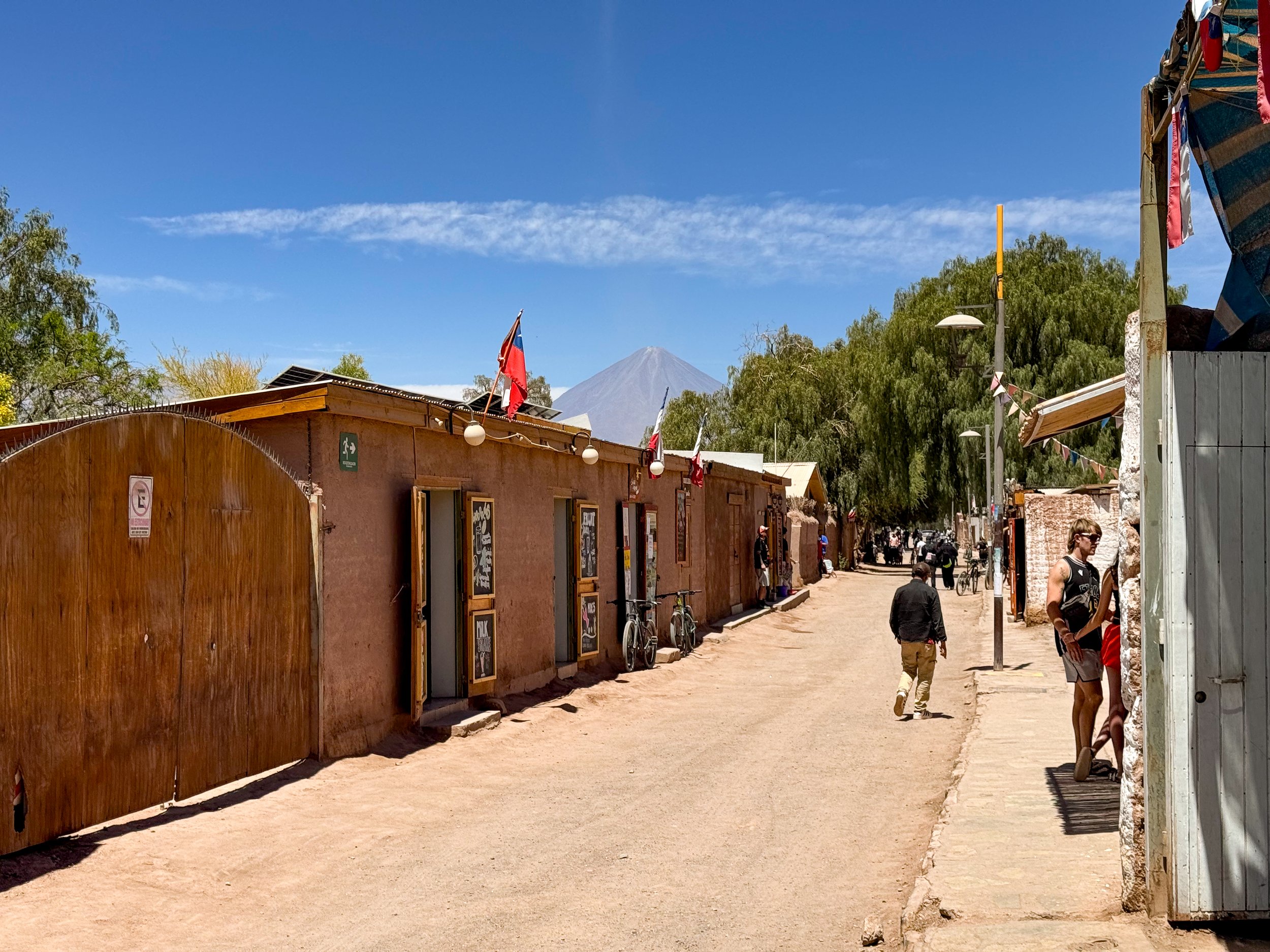
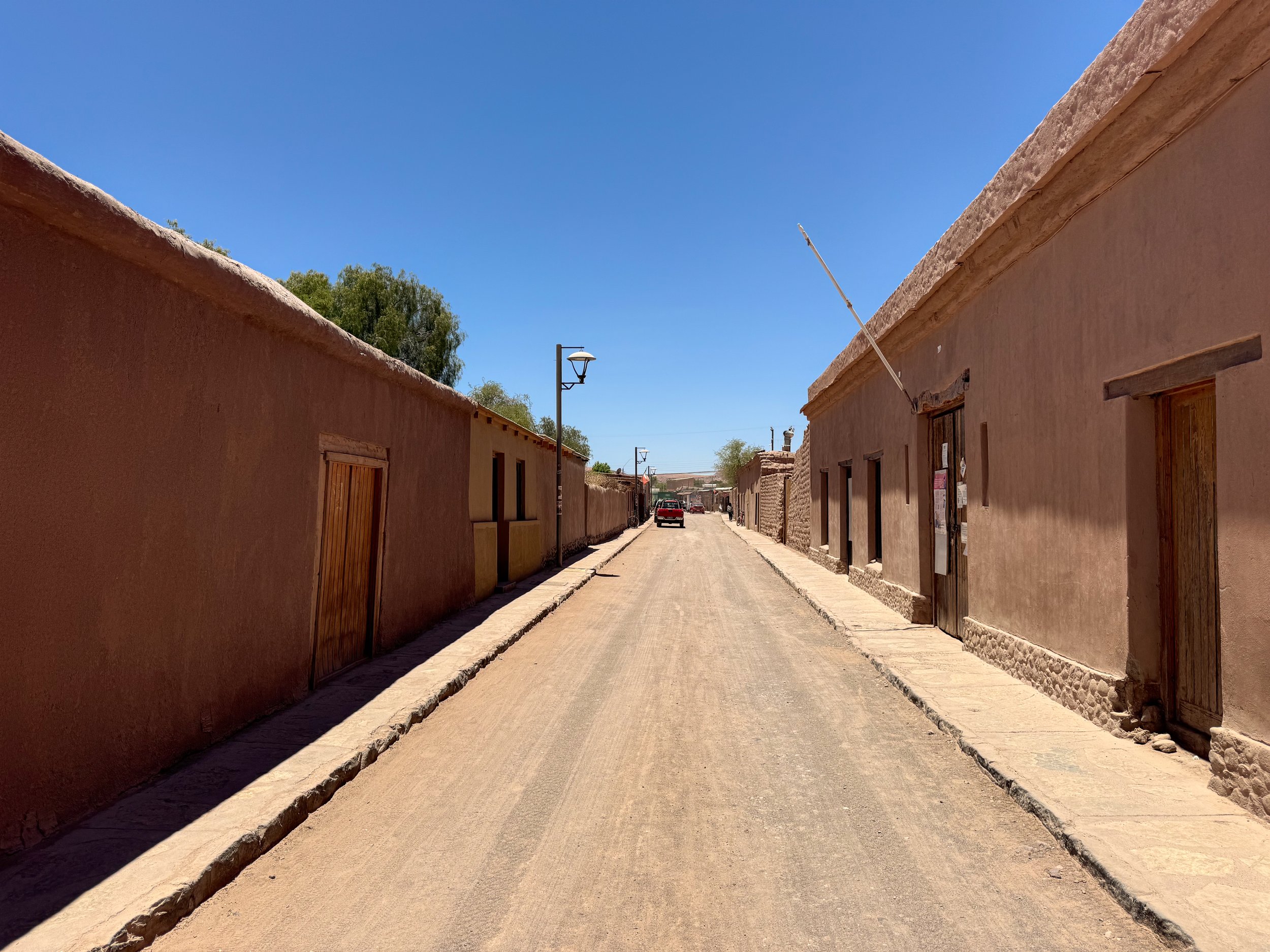
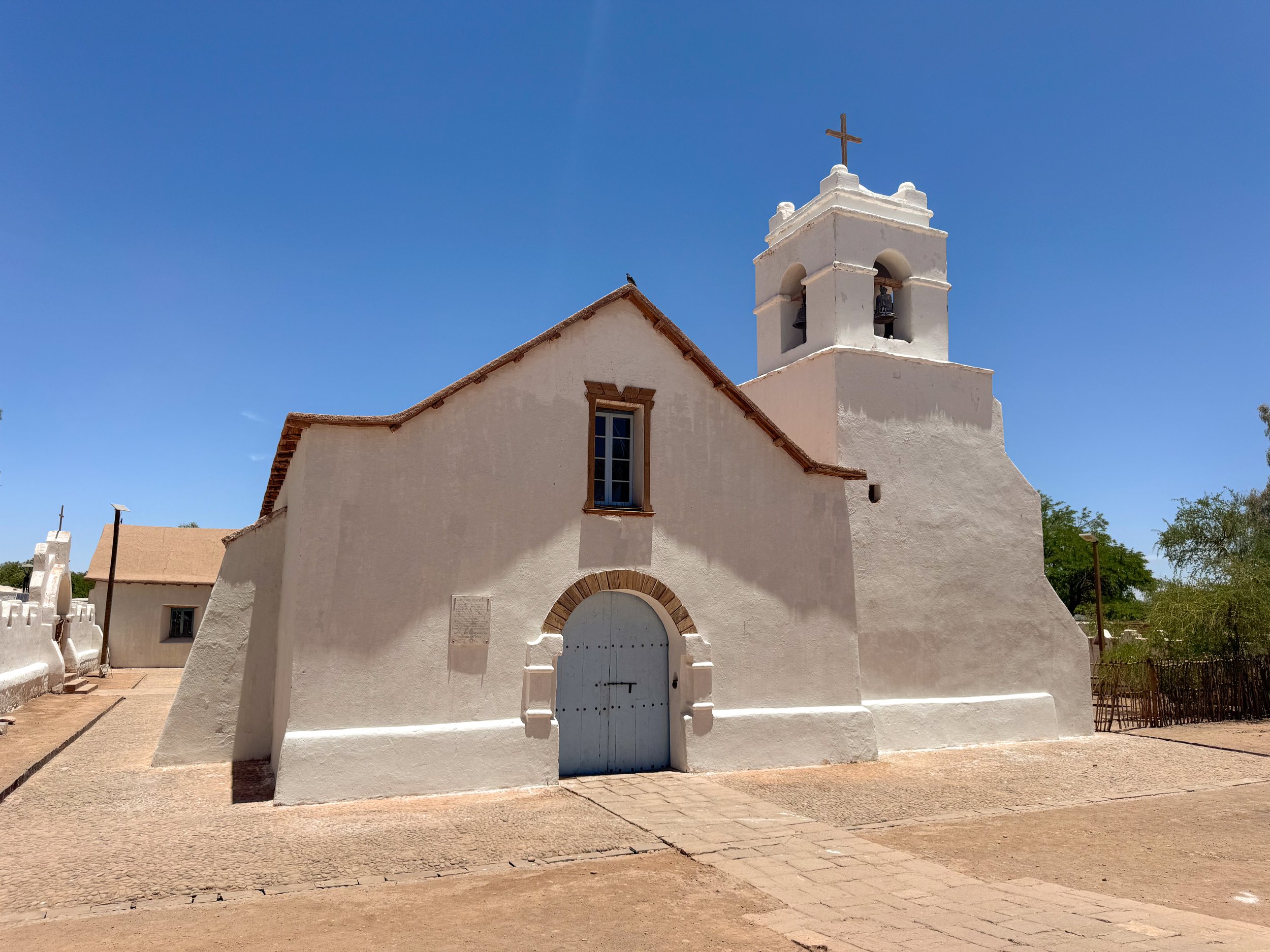
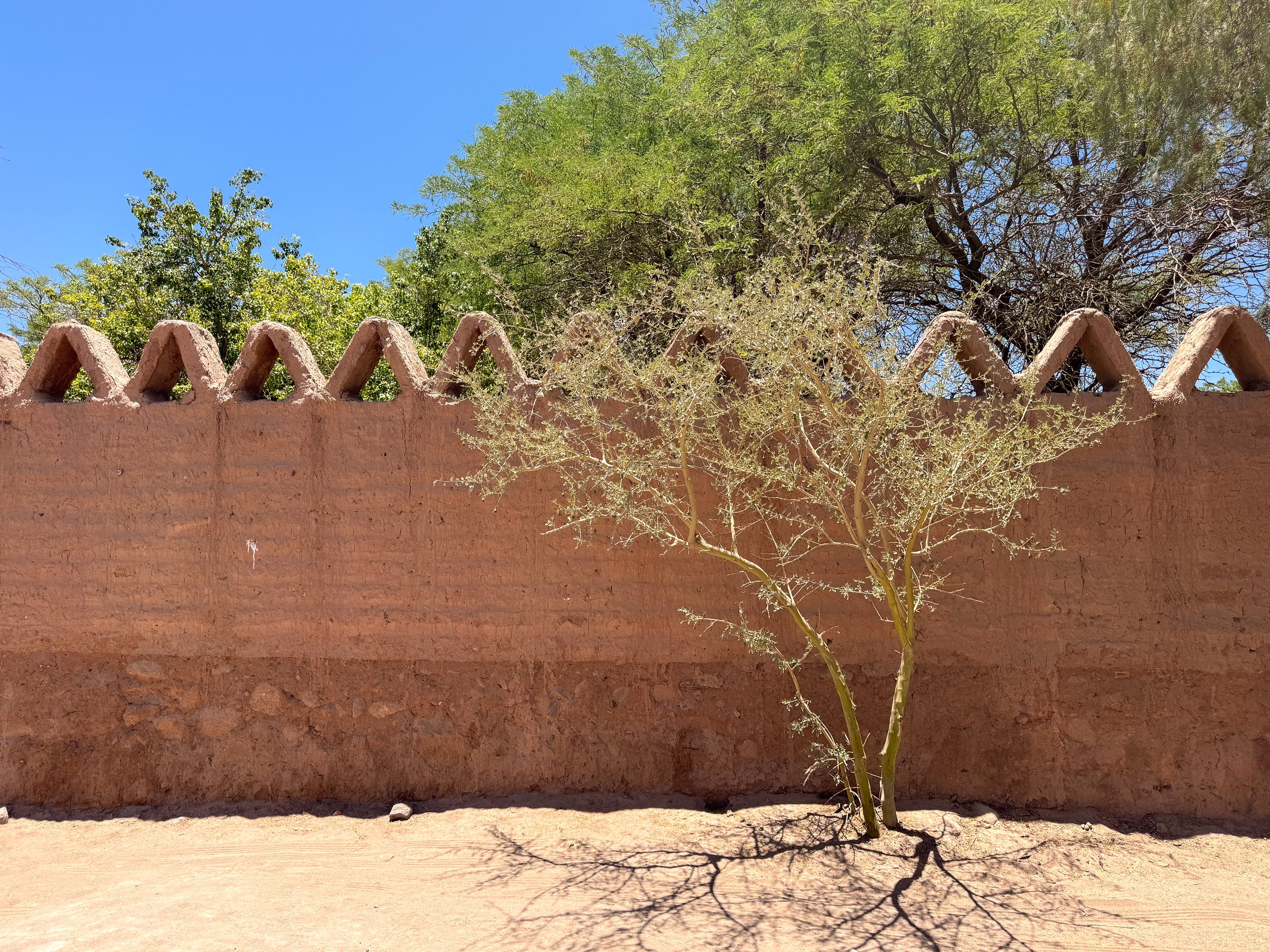
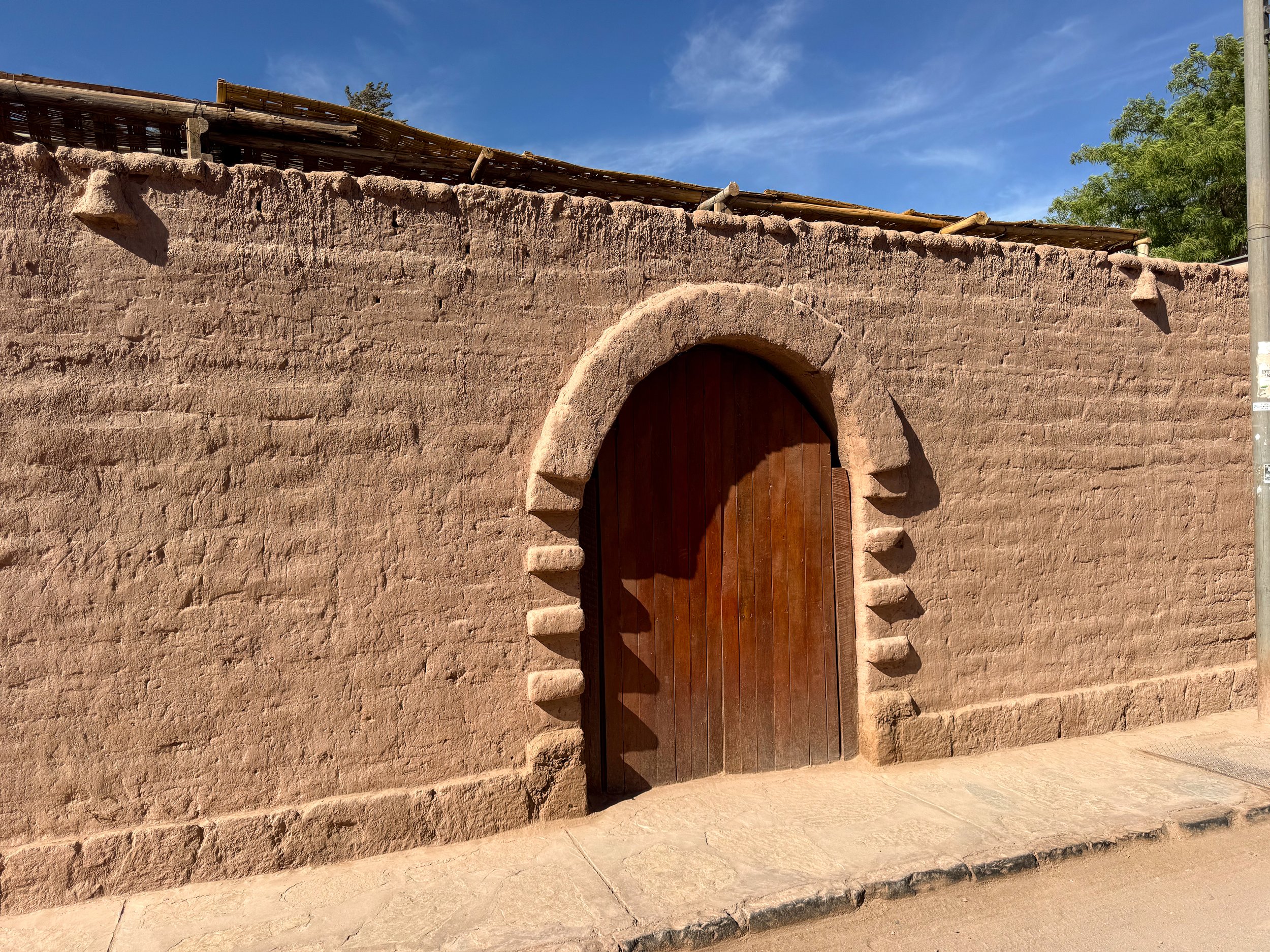
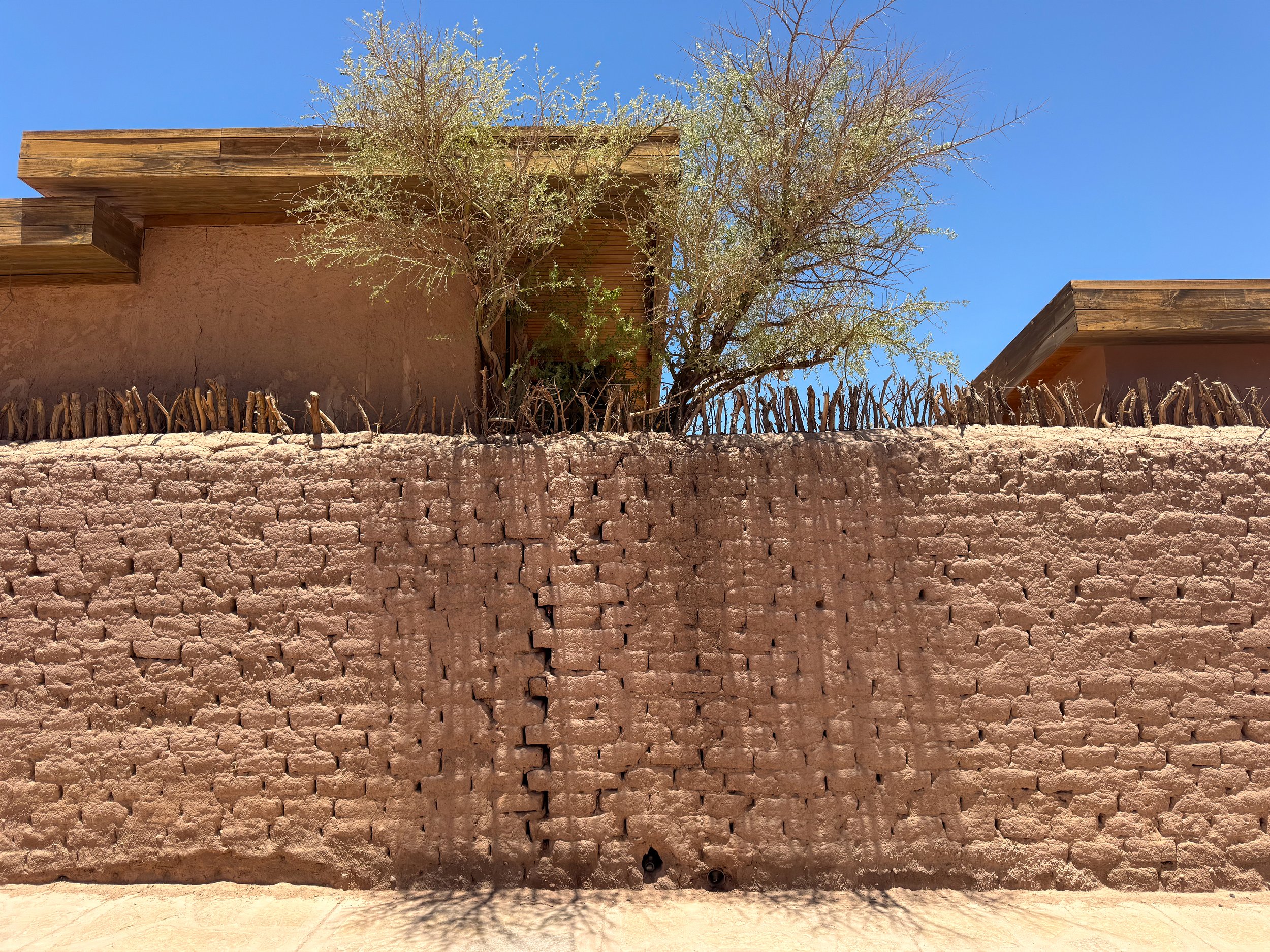
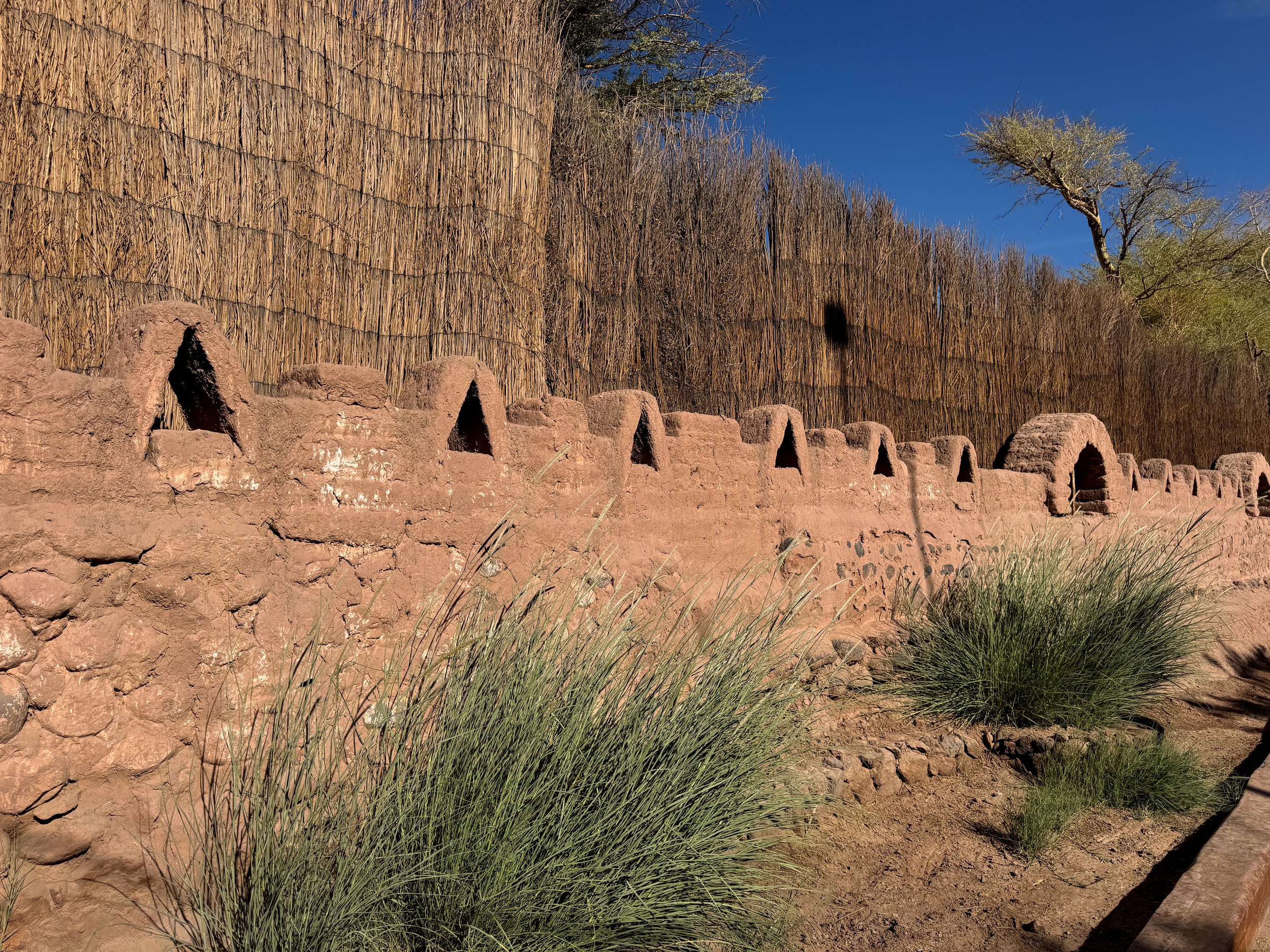
San Pedro de Atacama, Chile
San Pedro de Atacama is a western style town with a bohemian, adventurous and positive touristy vibe. The city is an Oasis in the Chilean Atacama Desert with adobe houses, desert lodges, narrow dirt roads and access to some of the region’s natural sights.
Calle Caracol. A dusty dirt road that passes through the center of San Pedro de Atacama with Chilean restaurants, live music, cocktail bars, ice cream shops, outdoorsy stores and tour operators.
Plaza de San Pedro de Atacama. A tree covered plaza with cacti gardens surrounded by beautiful adobe buildings including a historic church.
Trópico de Capricornio. Located about an hour south of San Pedro de Atacama along Chile Highway 23, a road sign marks the location of the Southern Hemisphere’s tropical latitude, the Tropic of Capricorn.
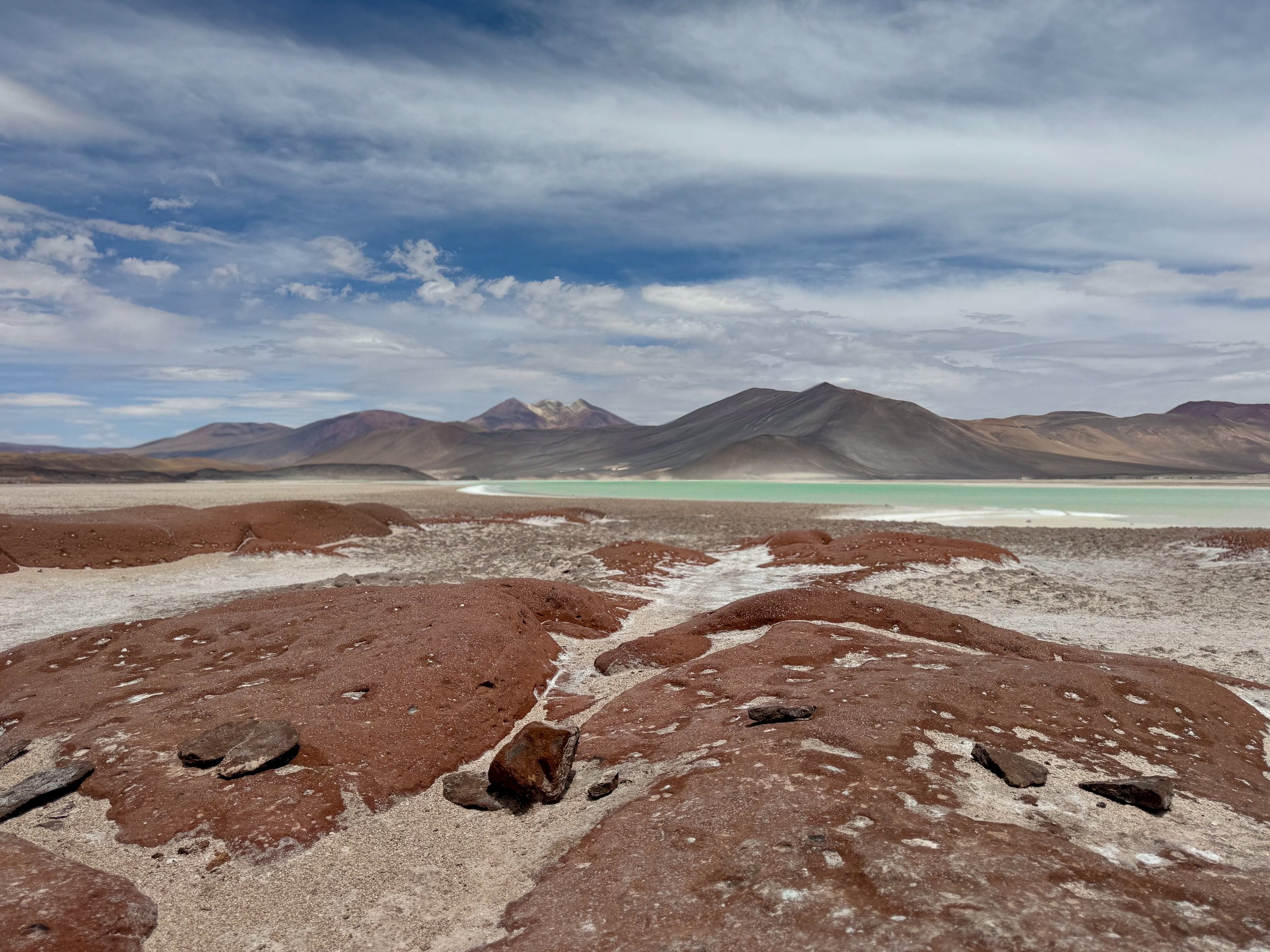
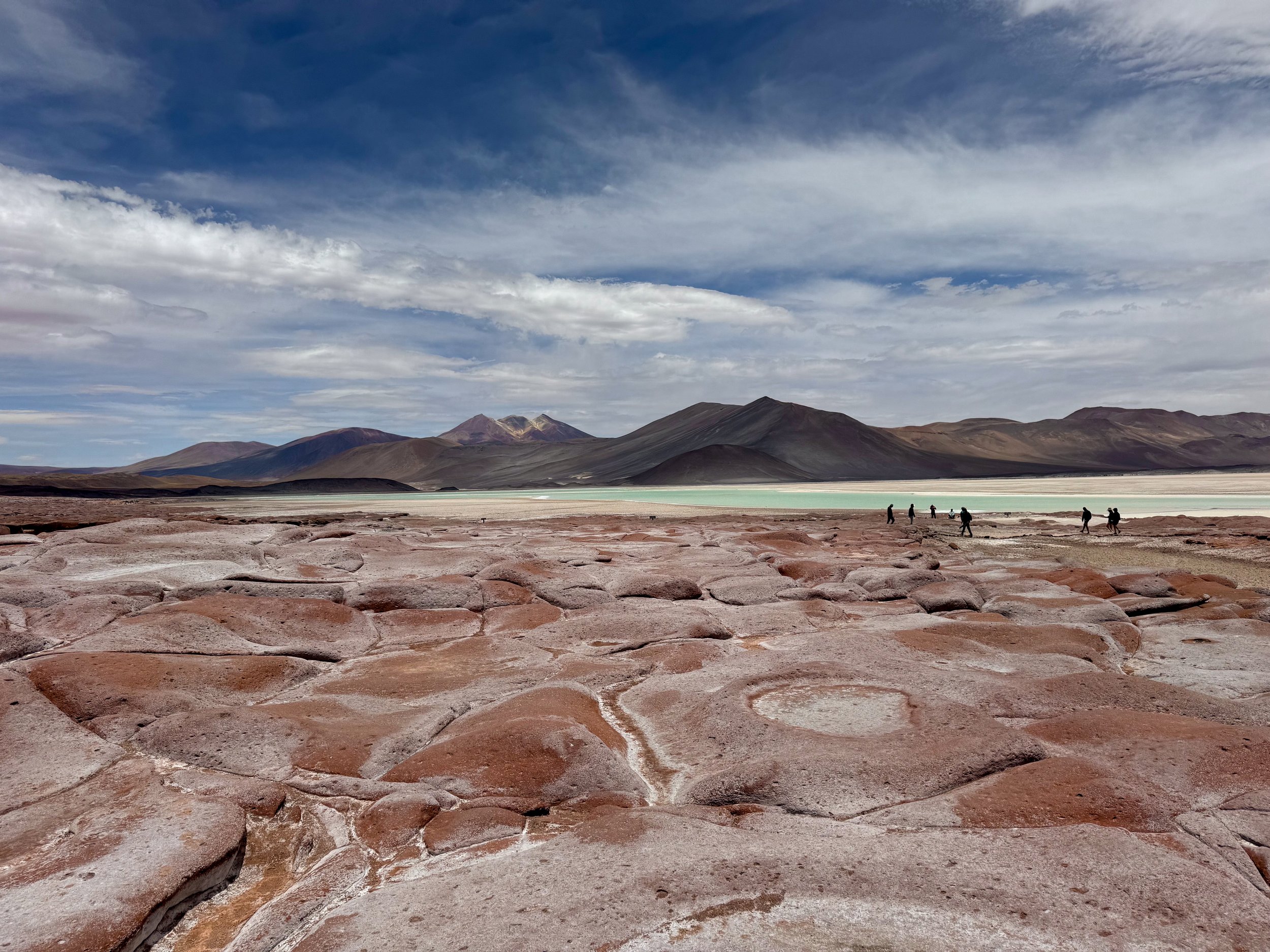
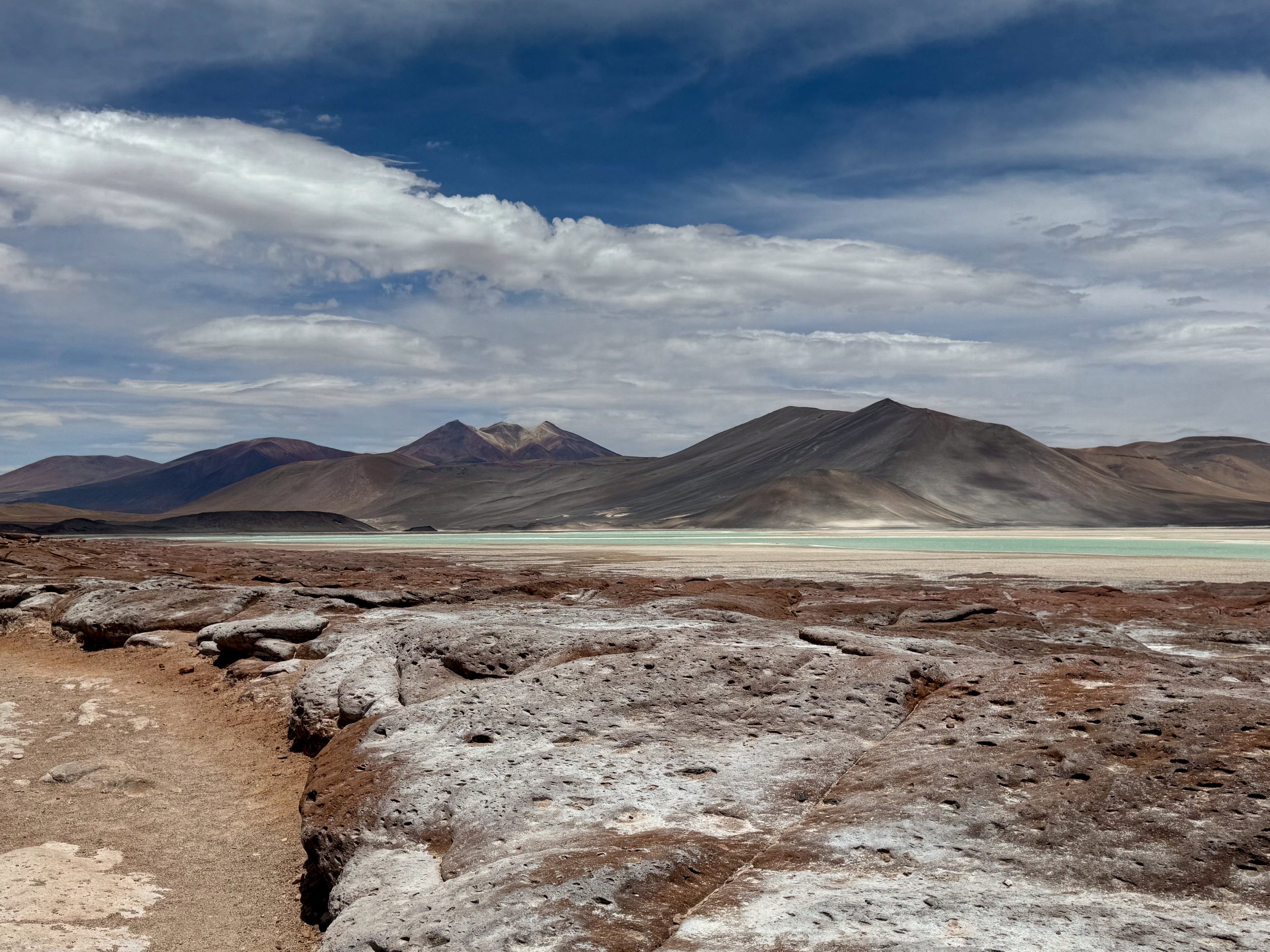
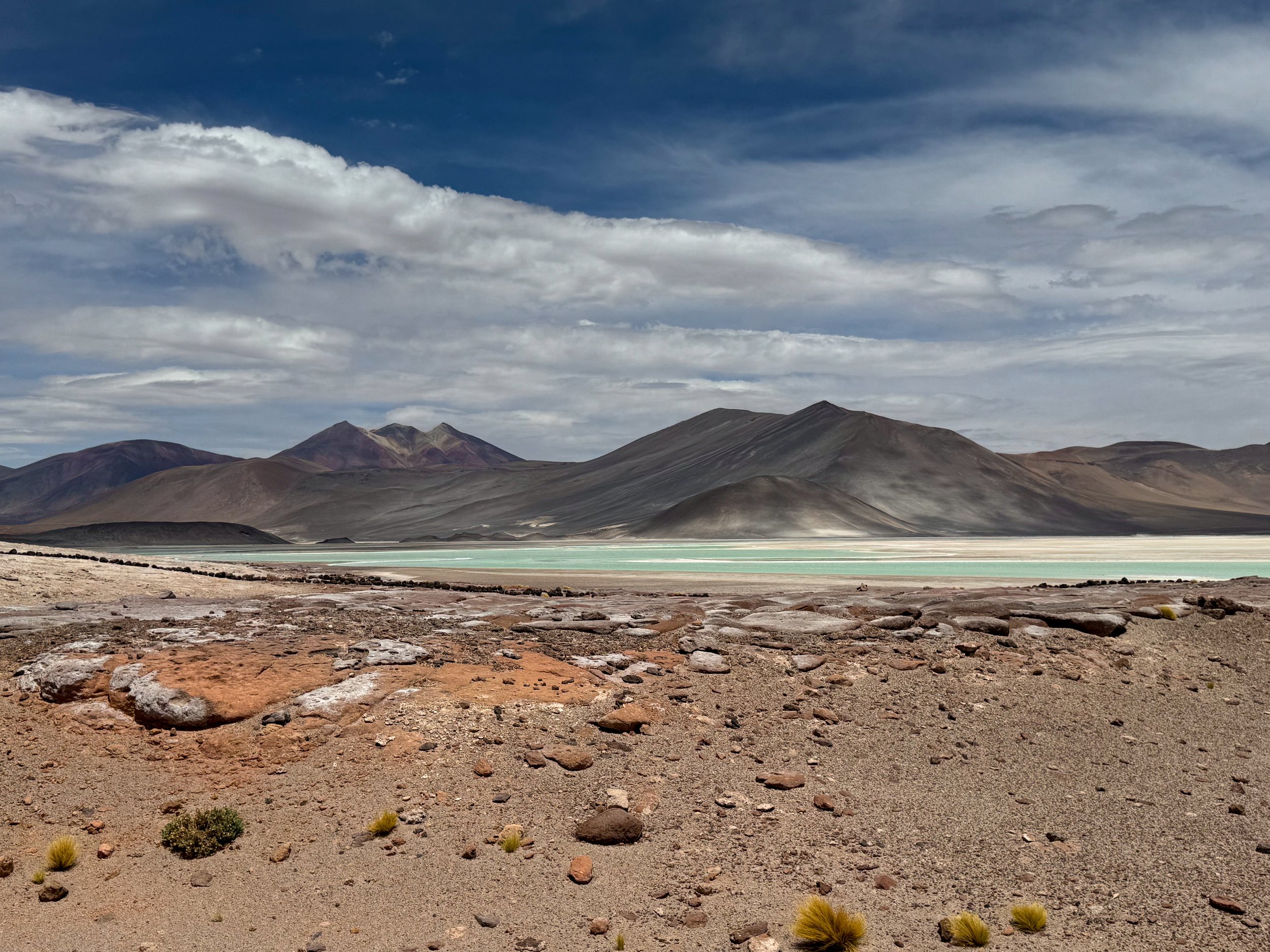
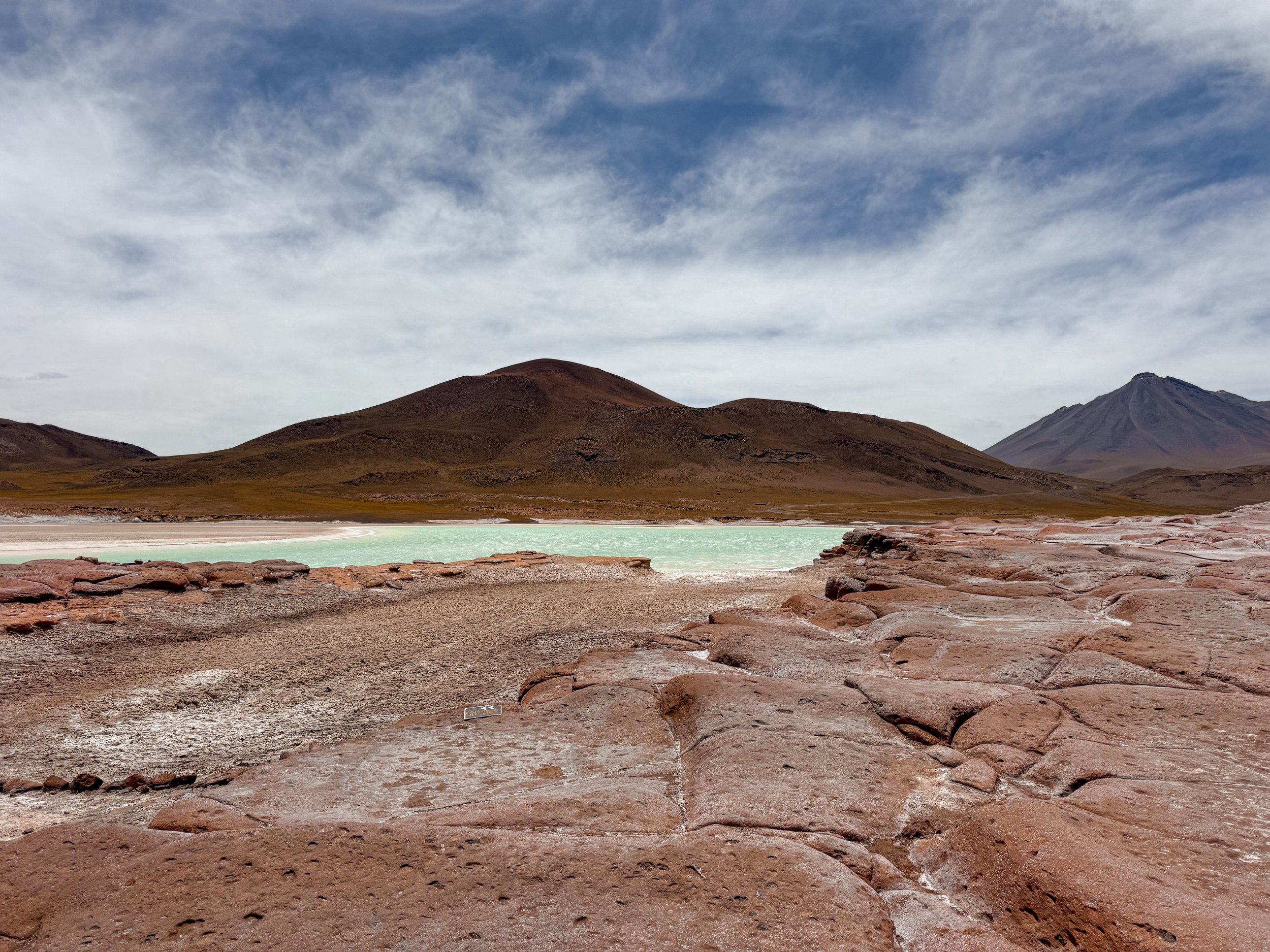
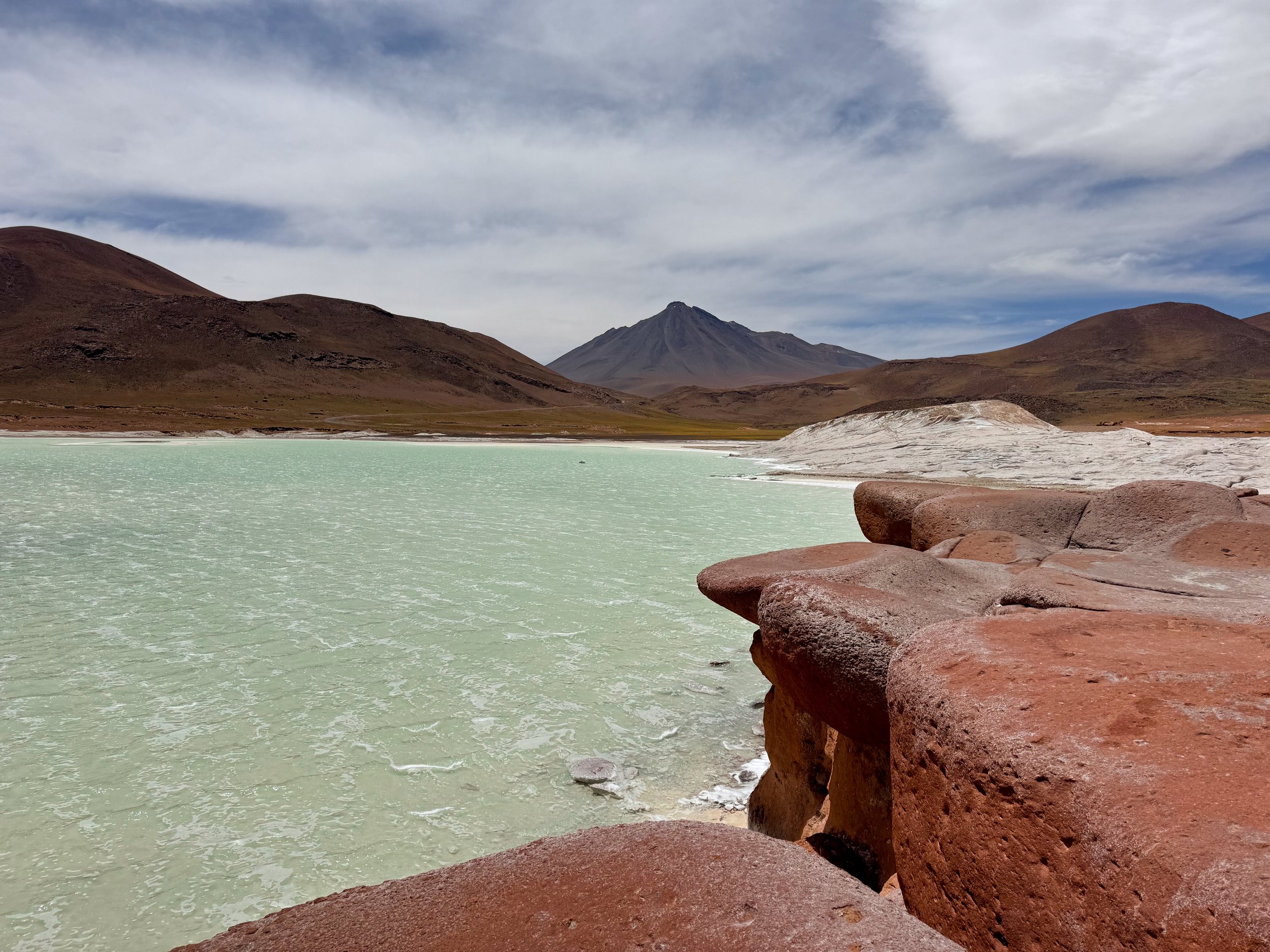
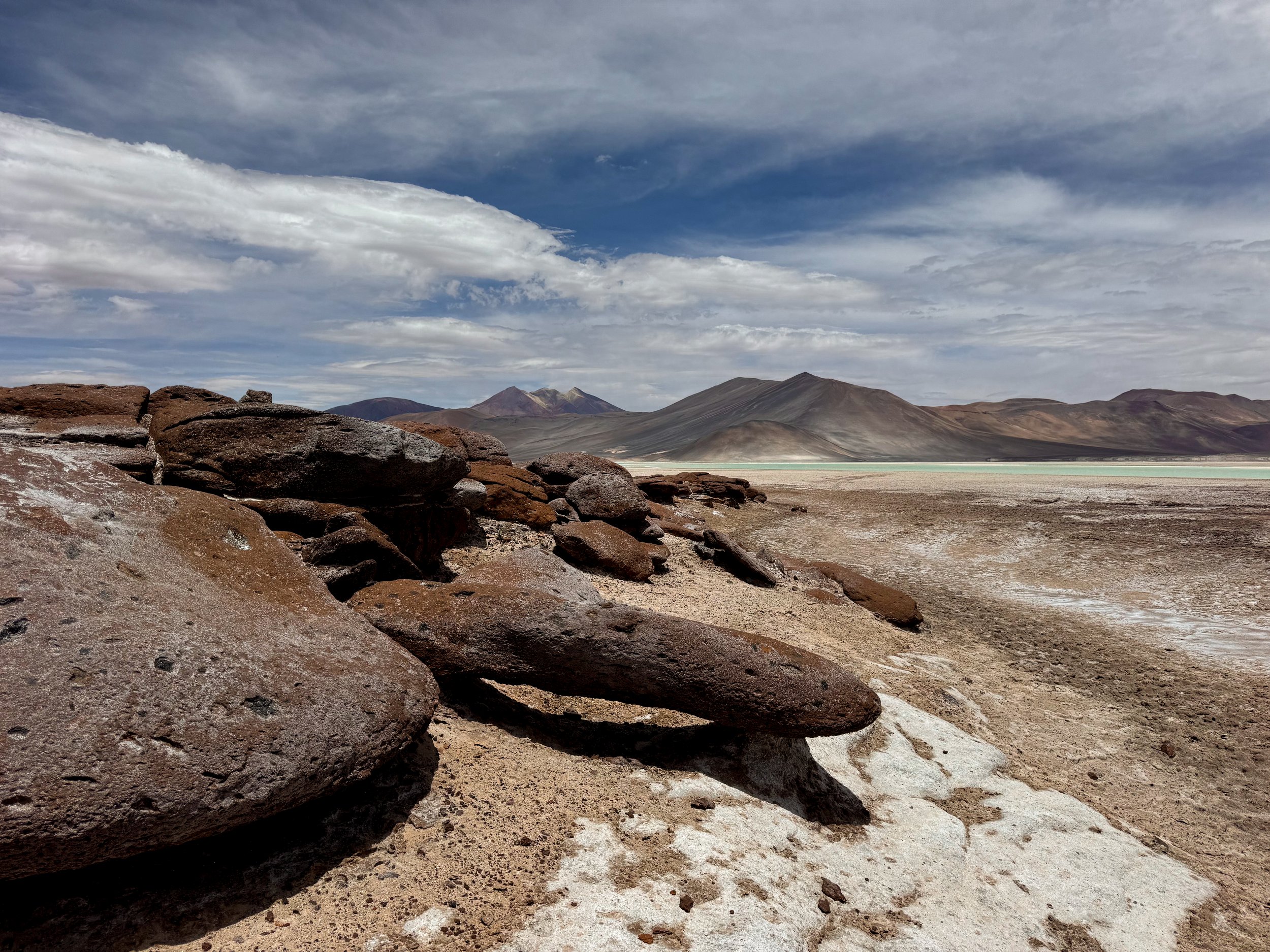
Salt Flats
Salar de Aguas Calientes (Piedras Rojas). A milky blue lagoon covering a pure white salt flat juxtaposed by a hardened red rock lava flow with a smooth and wavy texture. The lagoon is surrounded by towering volcanos with dark slopes and streaks of colorful mineral deposits near their summits.
Salar de Atacama. A craggily salt flat flanked by three mountain ranges home to multiple species of flamingos and migratory birds. We walked one of the trails, watching the flamingos feed and fly.





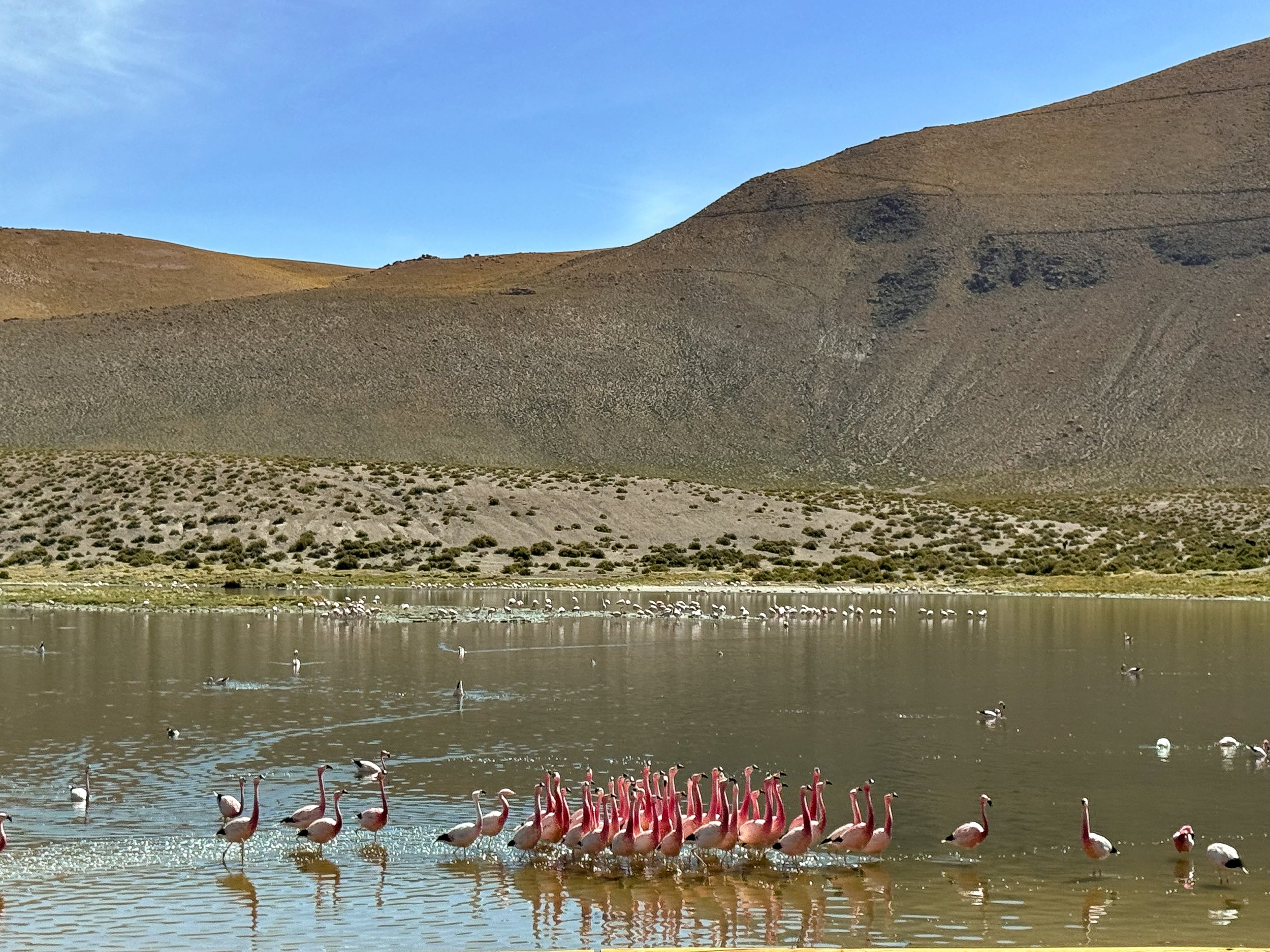

Lagoons
Laguna Miñiques. A large freshwater lagoon with a blue hued color at the base of the Miñiques Volcano. The lookout offers panoramic views of both as well as the volcanic mountain range beyond, shrub covered hills and distance vicuñas (a cute camelid) and suri (a large ostrich like bird)
Laguna Miscanti. A dark hued freshwater lagoon at the base of the Miscanti Volcano home to the Horned Coot, marine birds that build cone shaped mud nests in the lagoon near the shore.
Laguna de Machuca. A freshwater lagoon with hundreds of vibrant pink flamingos feeding, flying and mating around the shallow water. We spotted a large group of male flamingos dancing in unison to attract females.
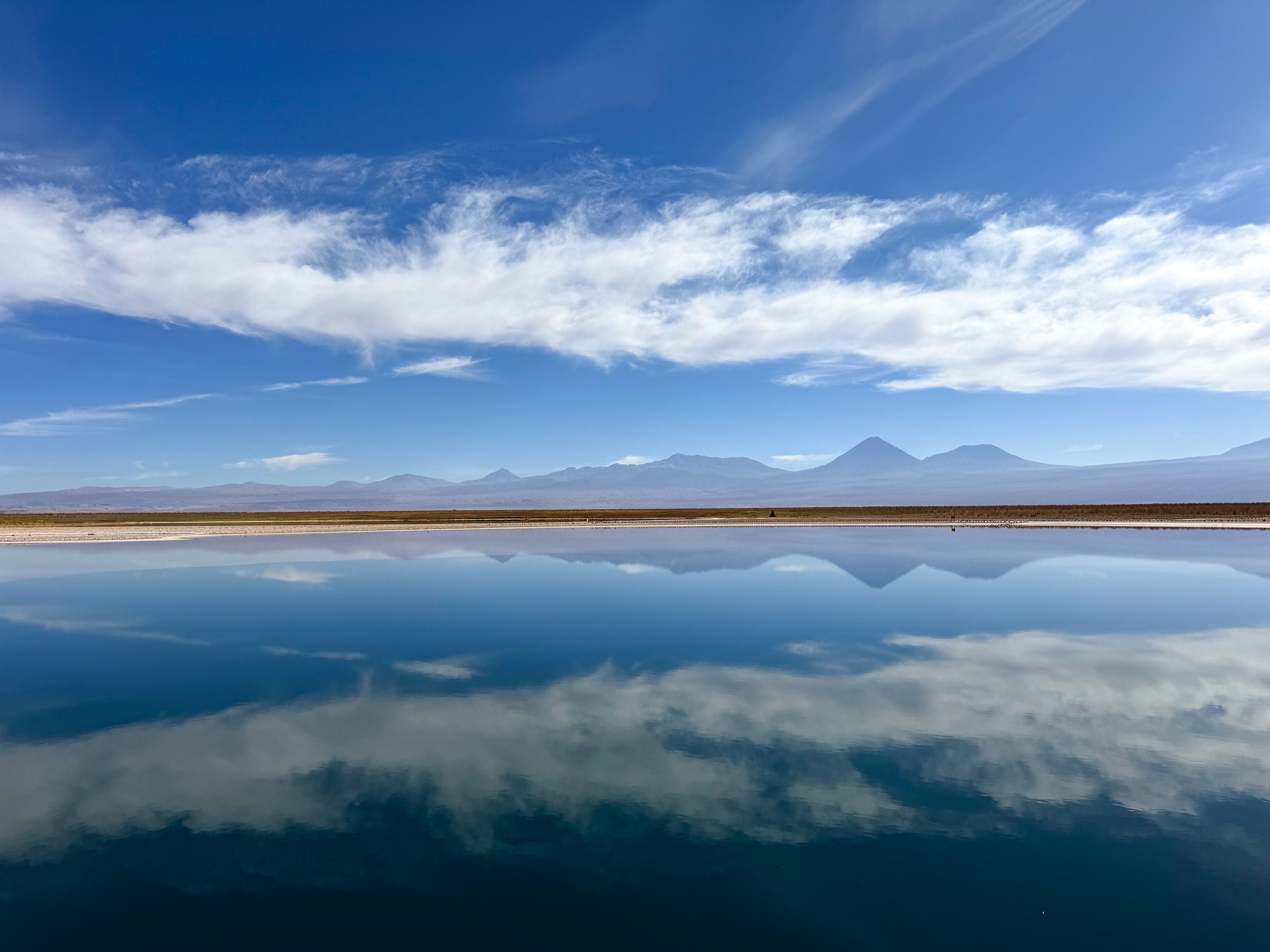
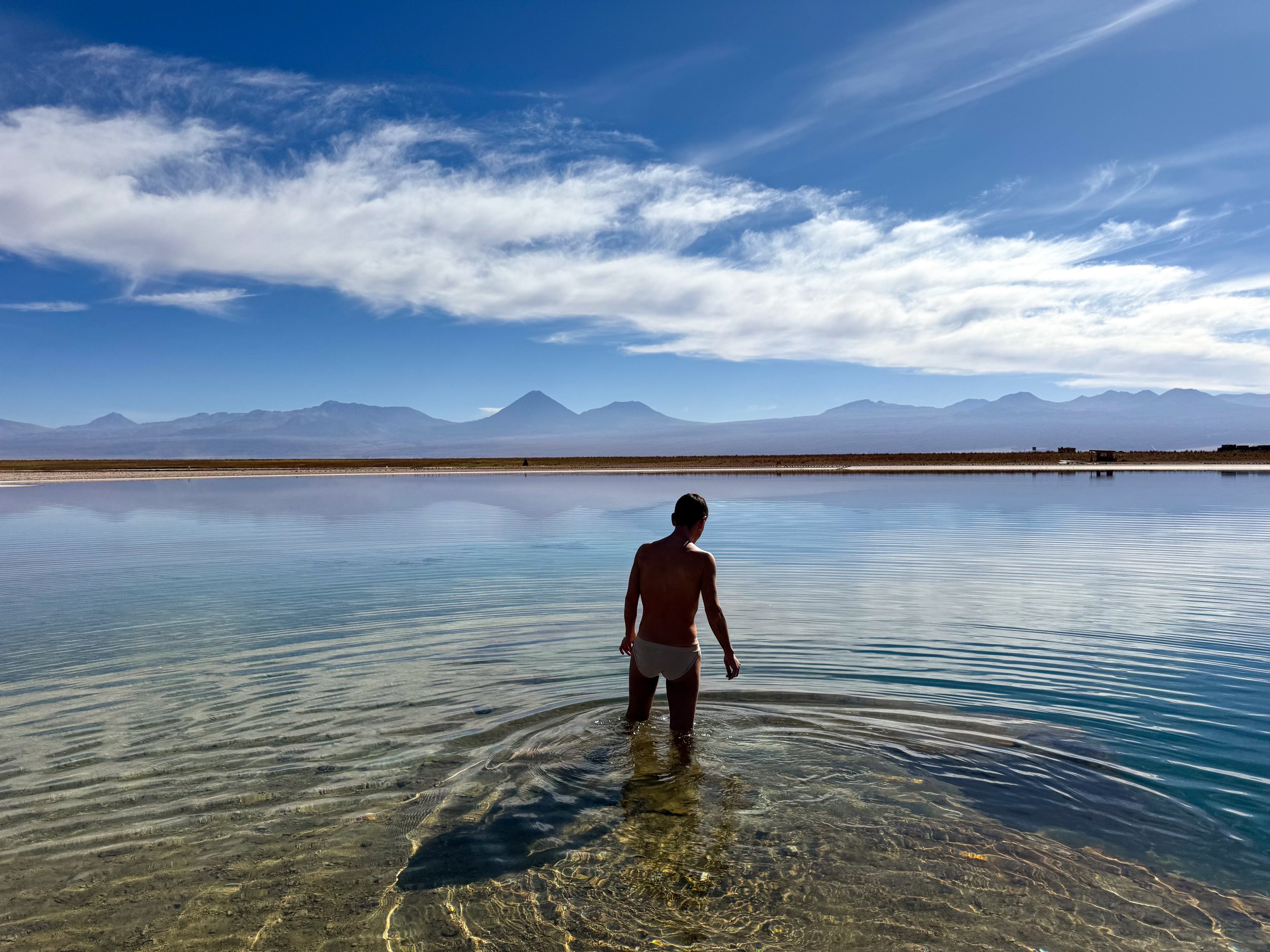
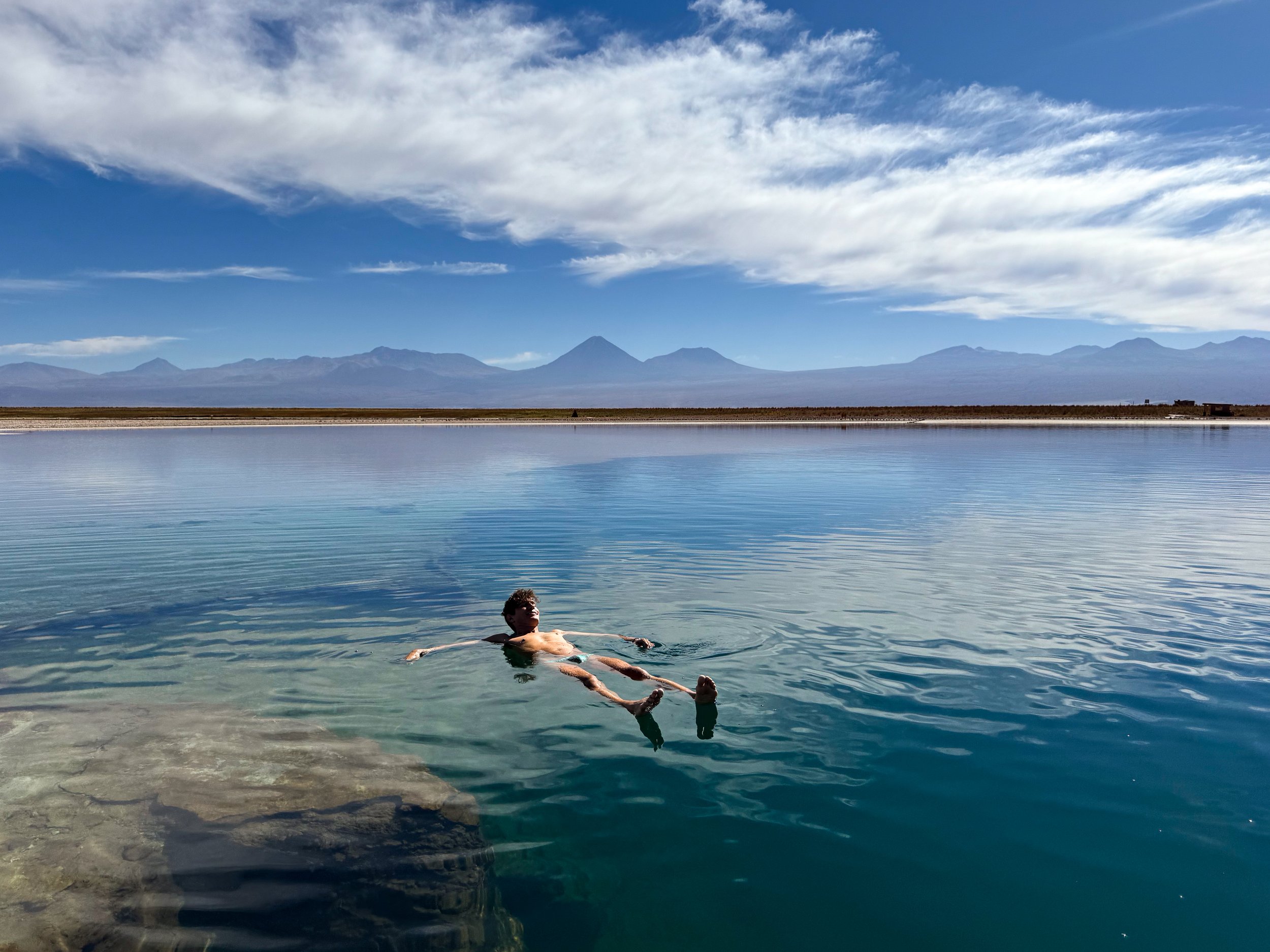
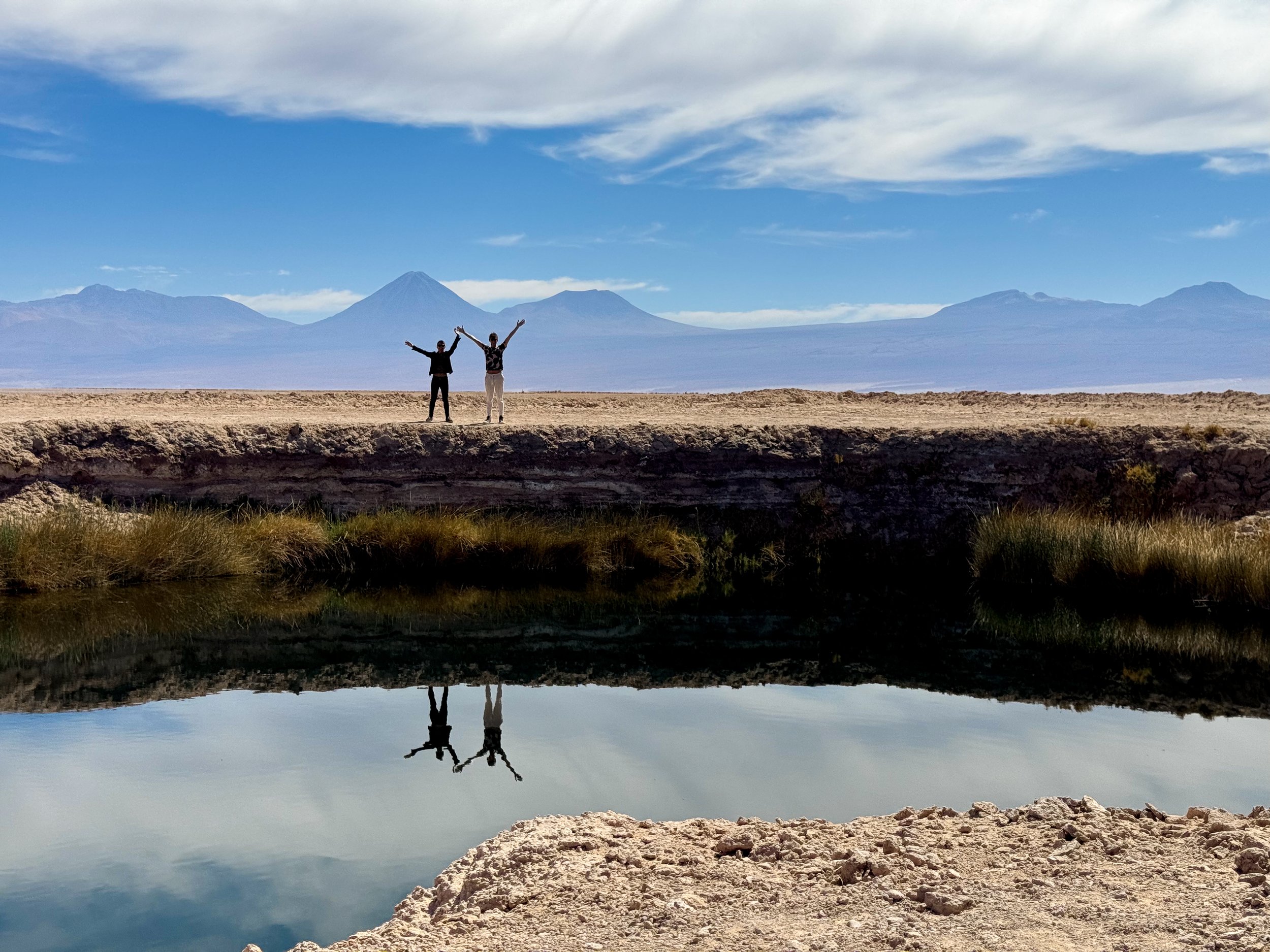
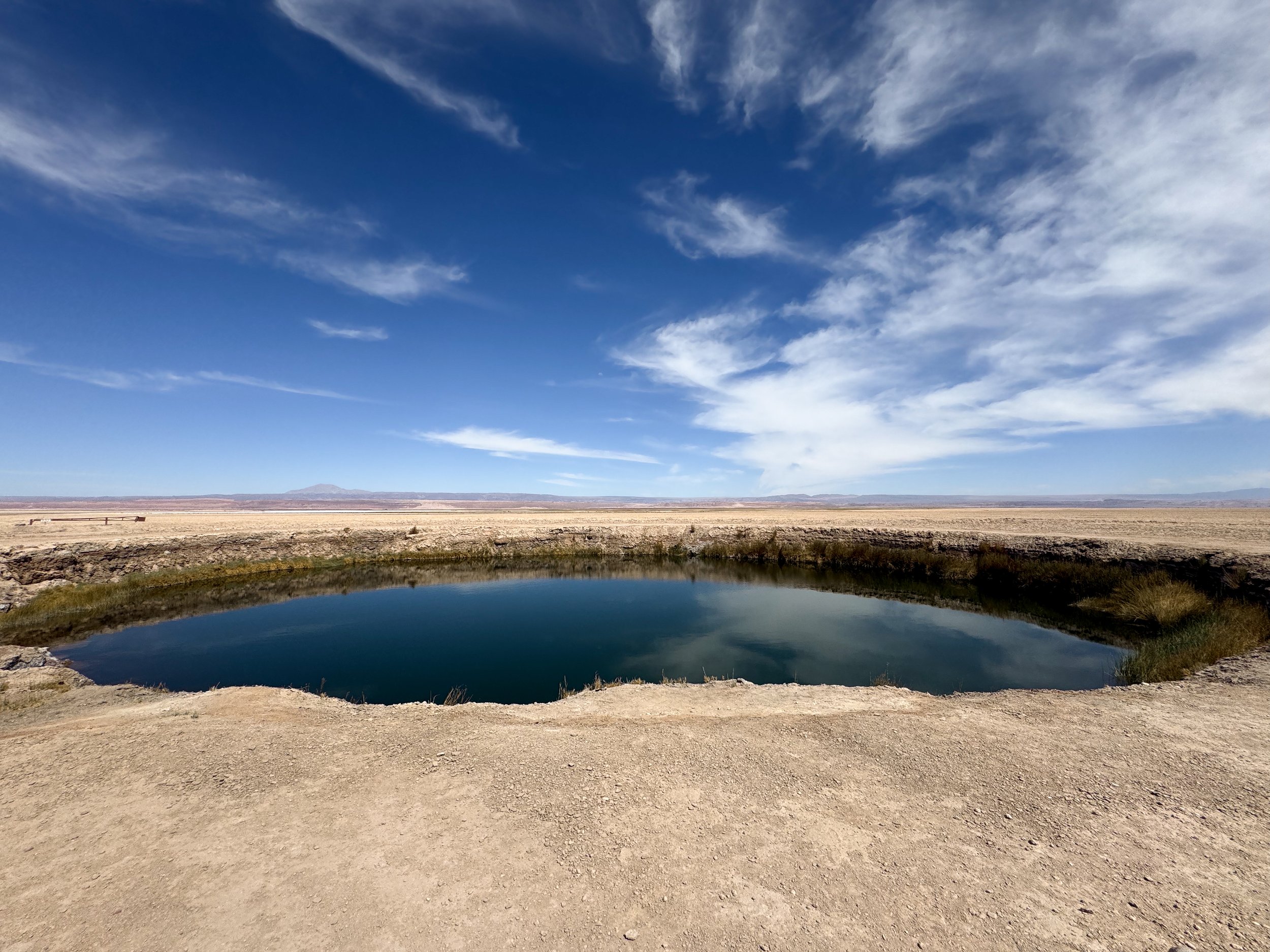
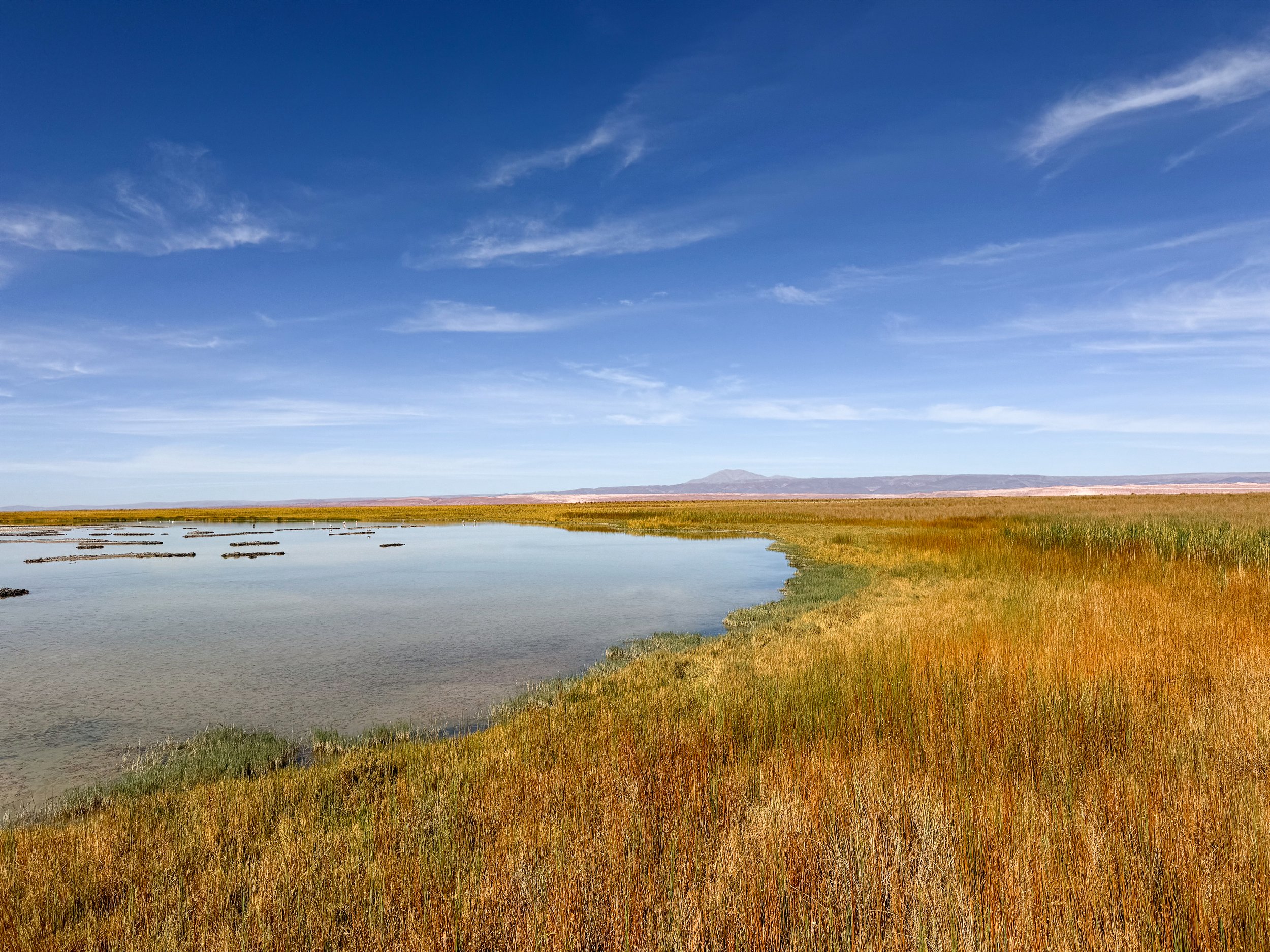
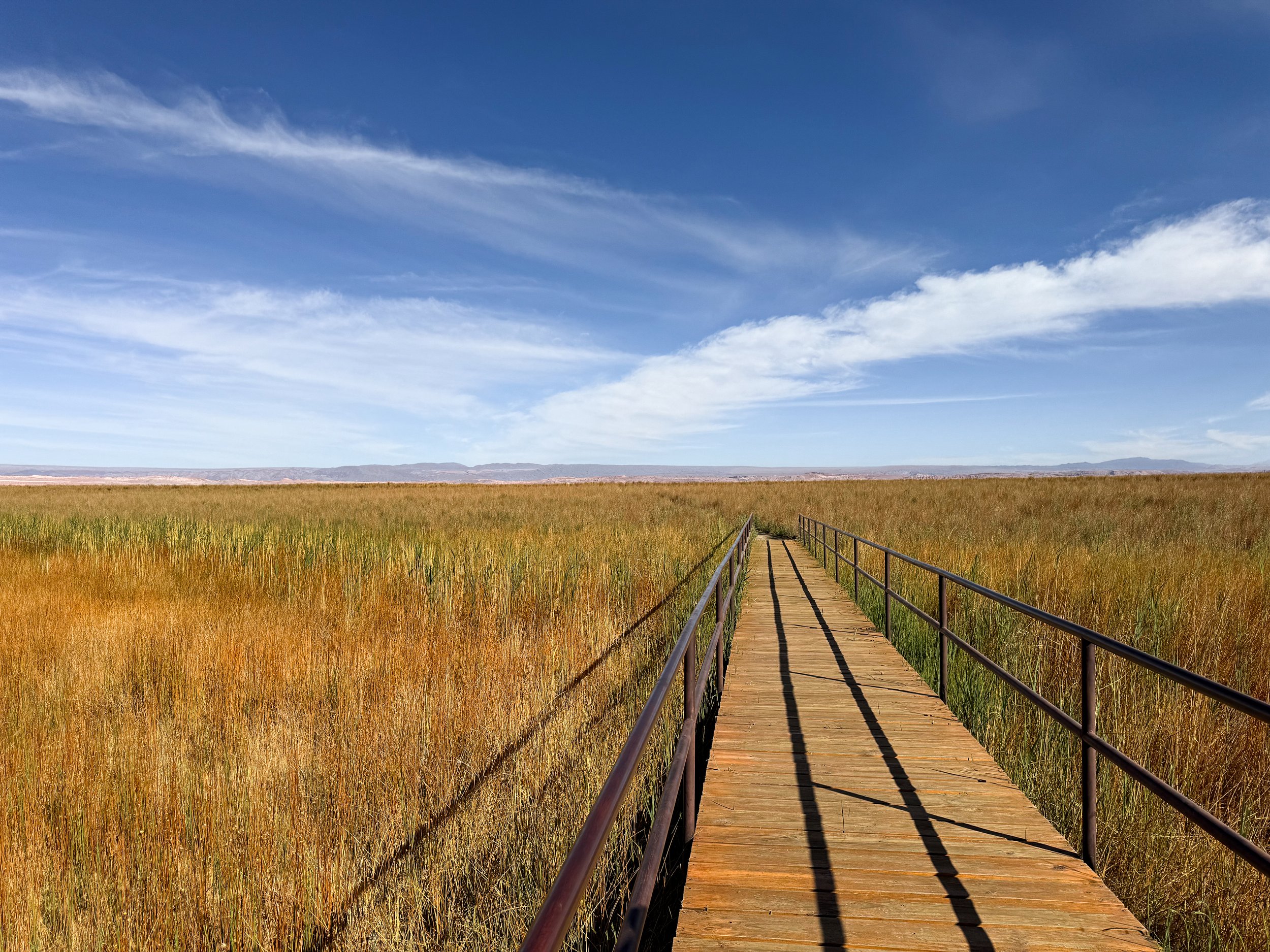
Lagunas Escondidas de Baltinache. A salt water lagoon with a mirror effect reflecting the volcanos and sky. It’s one of the only lagoons in the Atacama that people are allowed to swim in. We walked into the cold water and effortlessly floated at the surface.
Ojos del Salar. Two small, nearly perfectly round lagoons that resemble a pair of eyes.
Laguna Cejar. A lagoon with a boardwalk along its grassy edge and flamingos feeding in the distance.
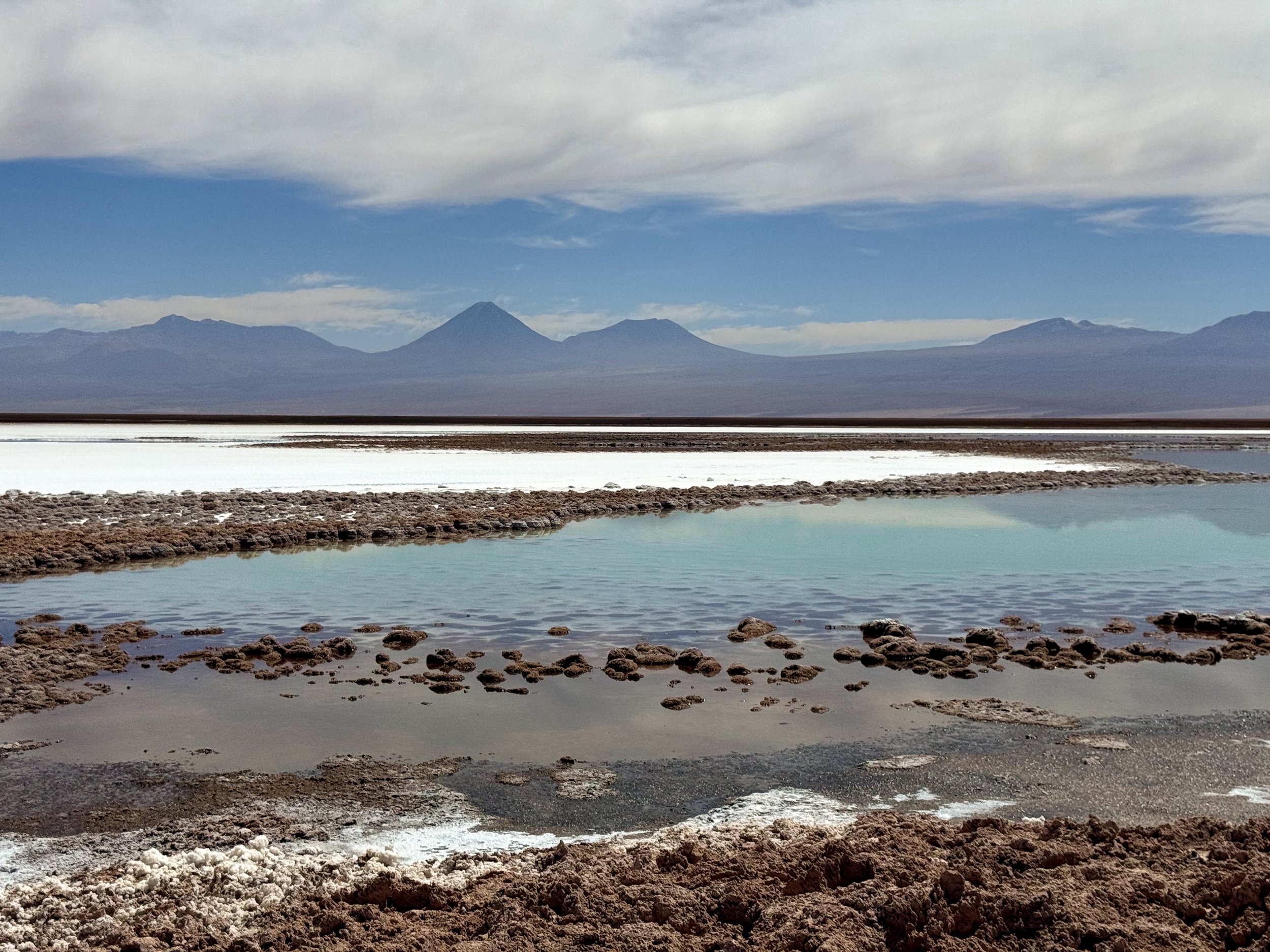
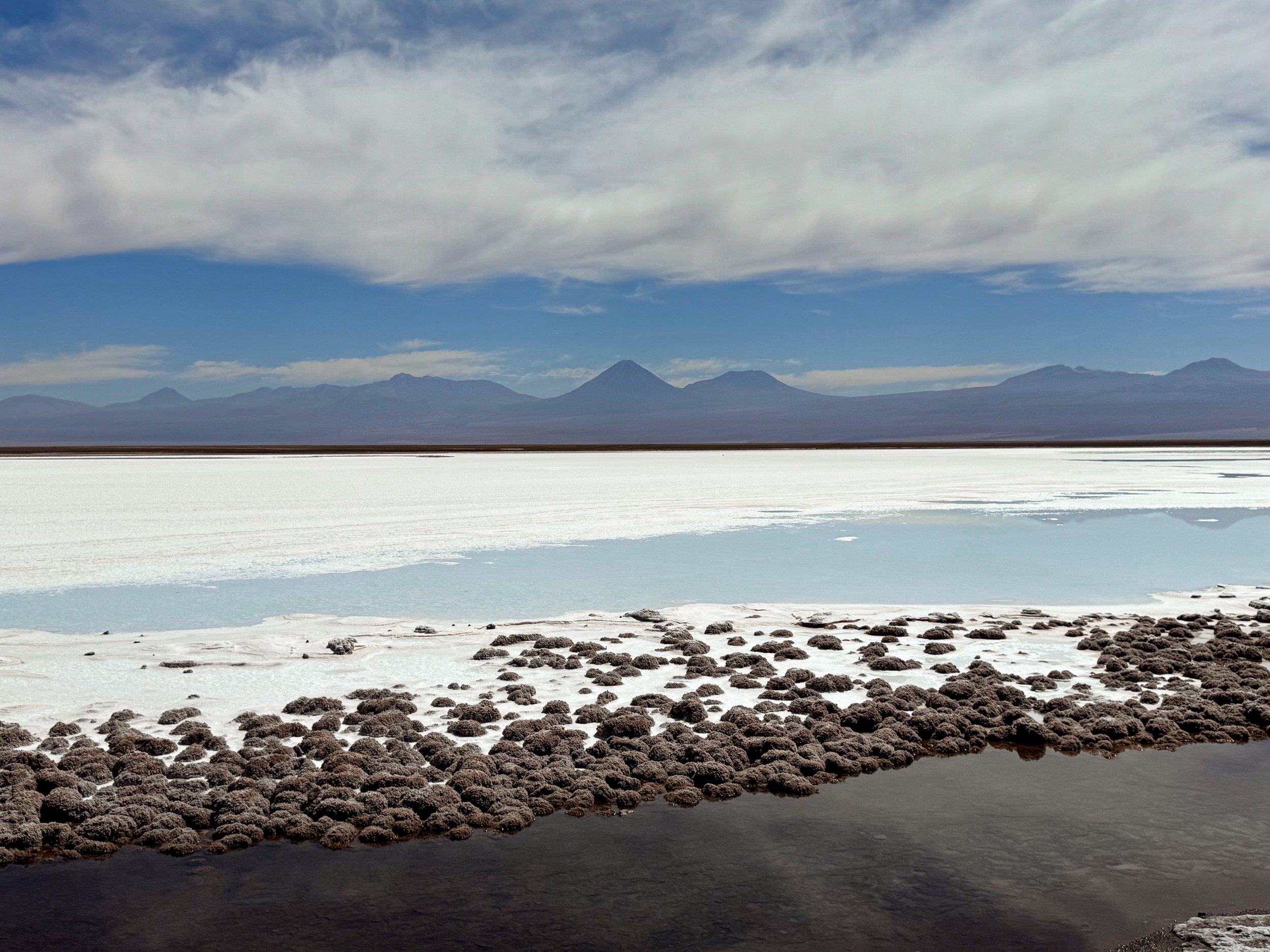
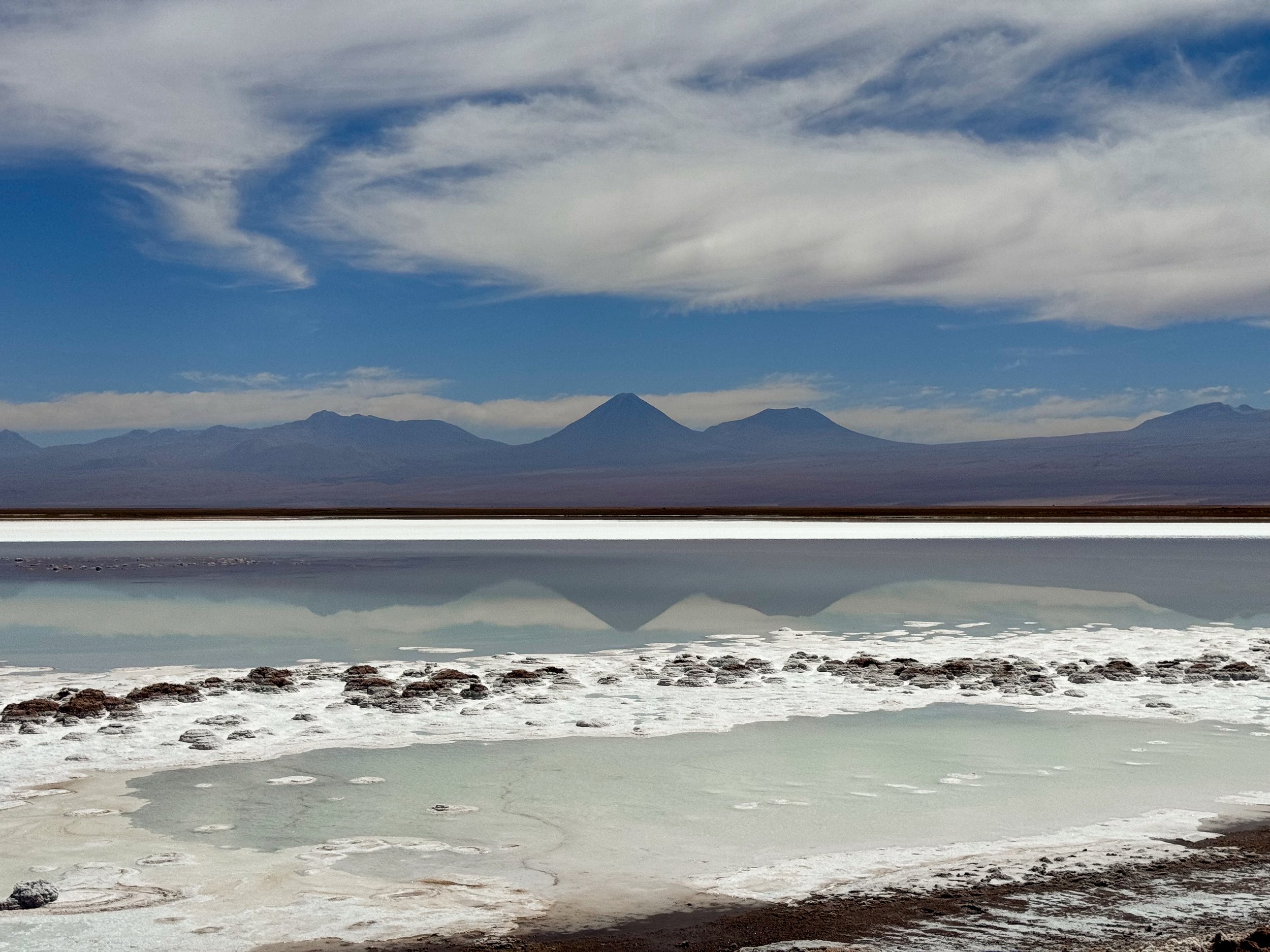
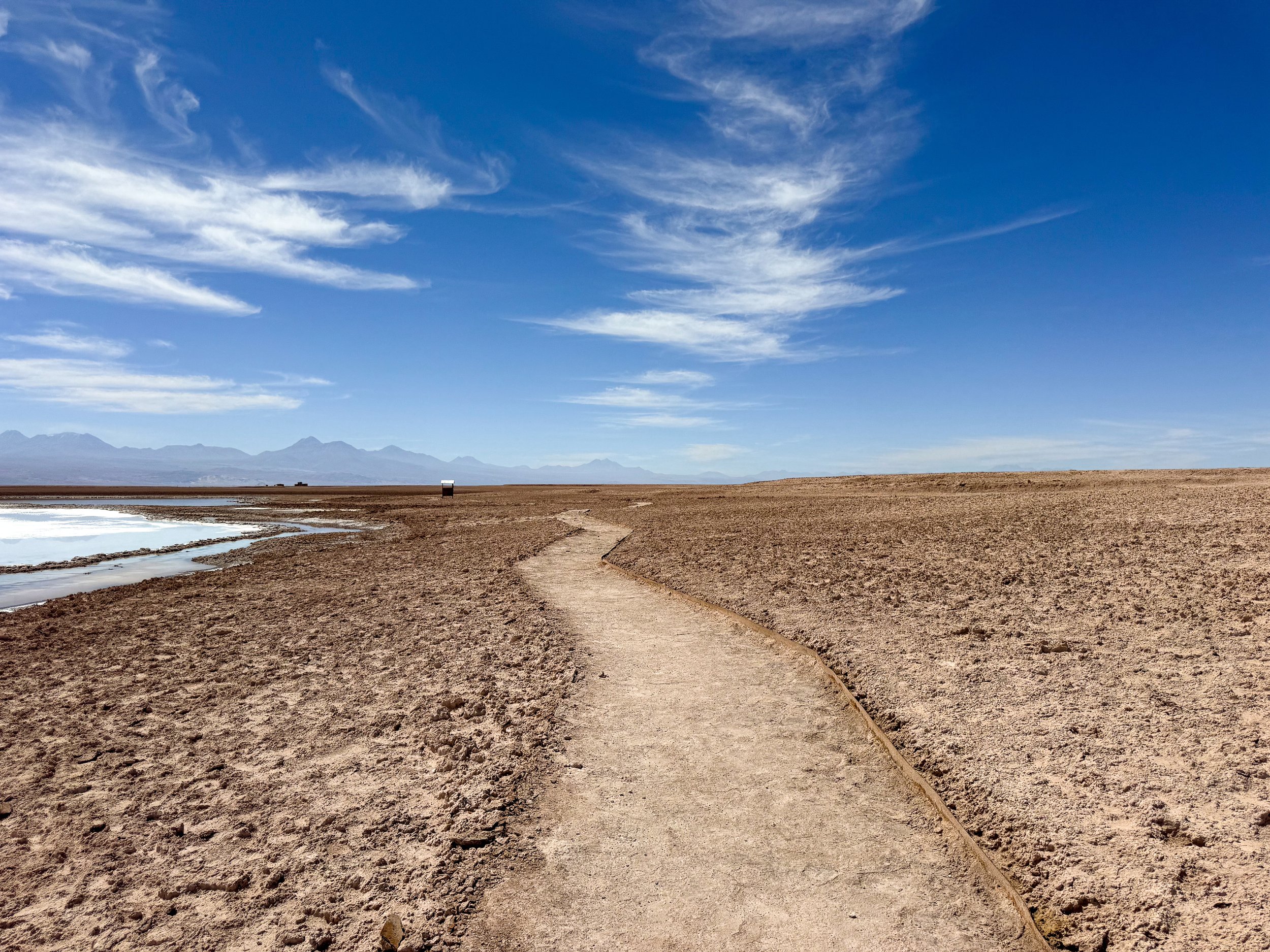
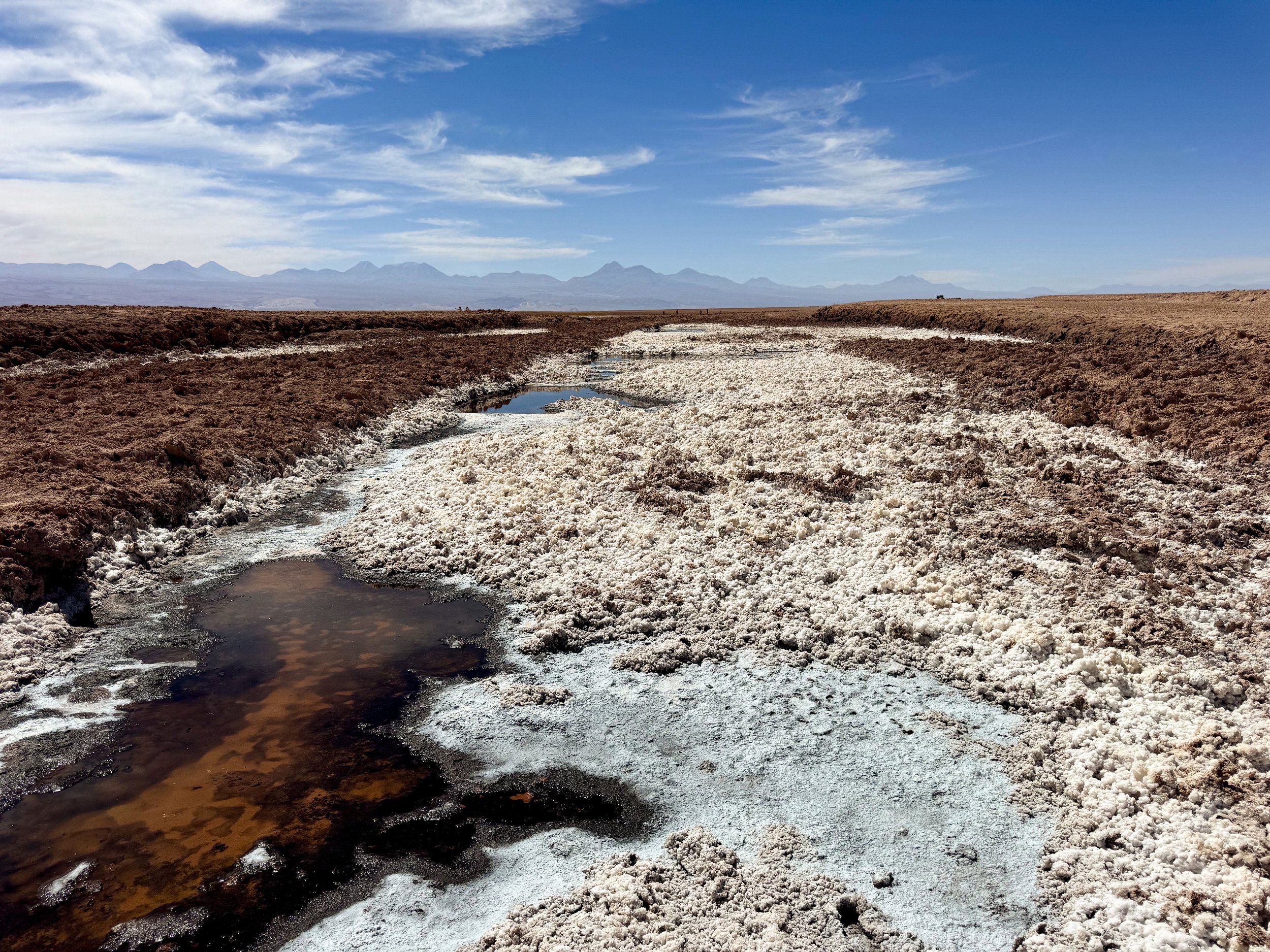

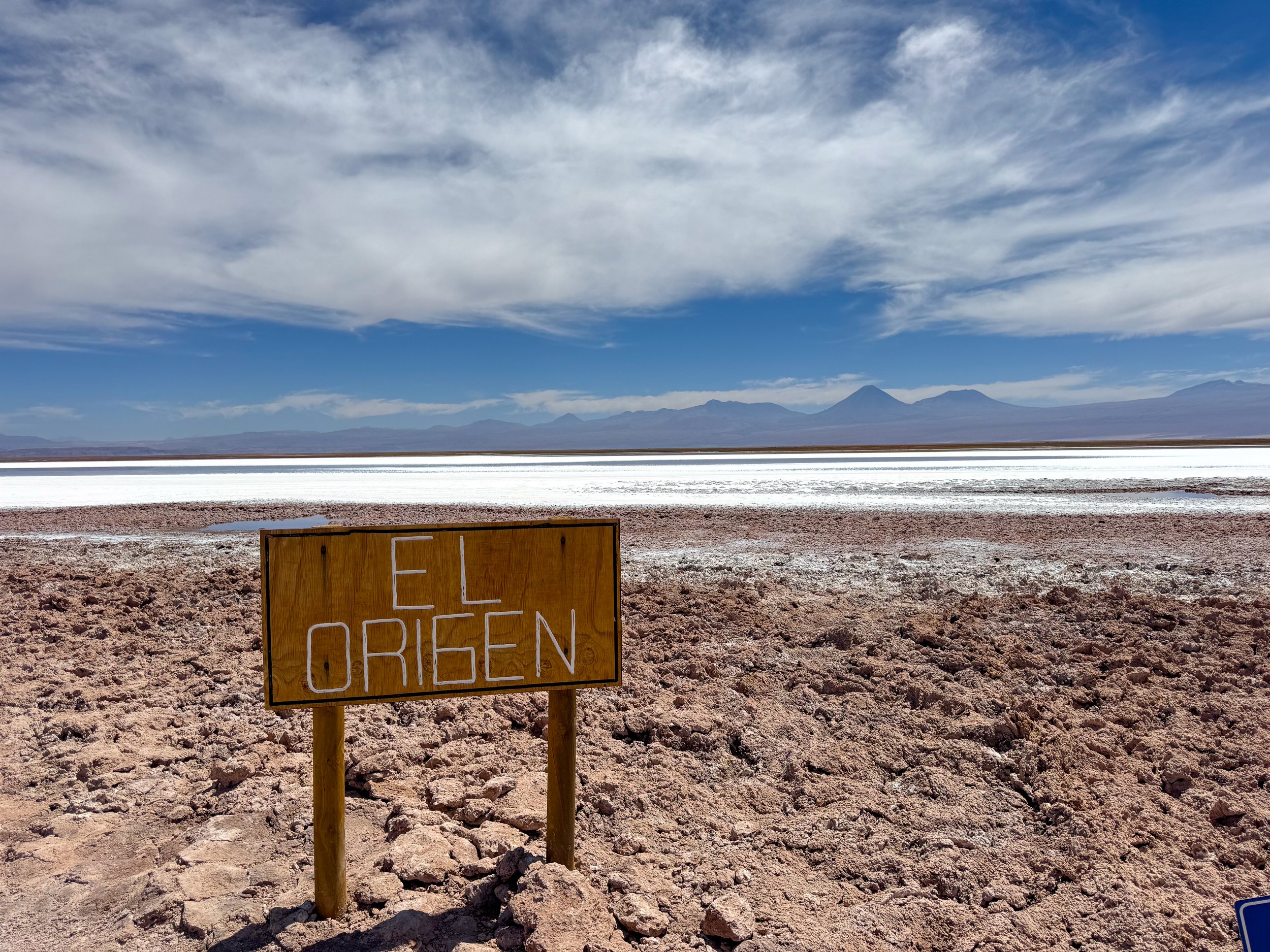
Laguna Tebenquiche. A shallow salty lagoon in a slat flat home to colonies to stomatalites, the first life forms on Earth. The trail emphasizes how they were the origin of life on earth and have played a role in continuing life after the past 5 mass extinction events.
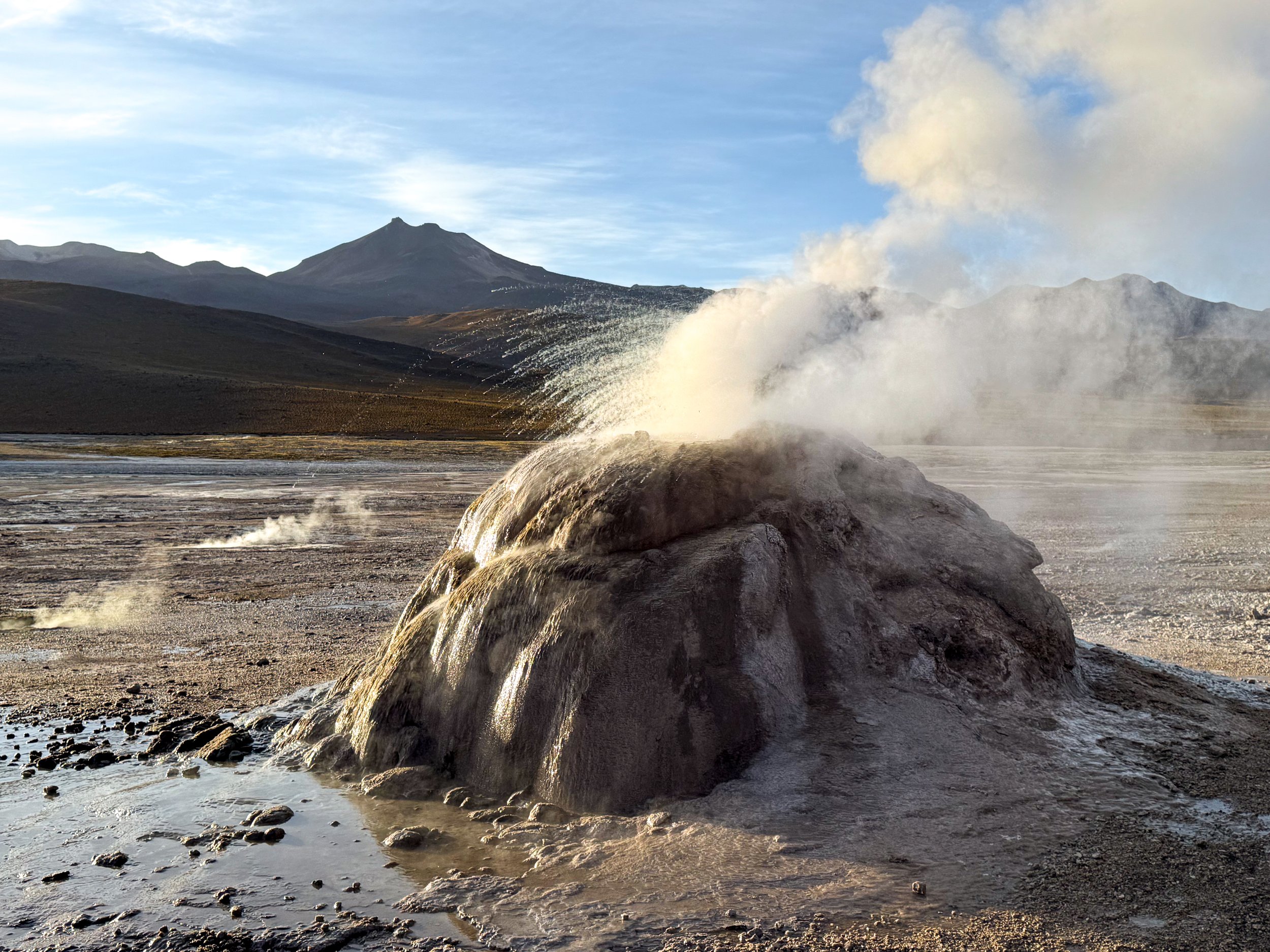
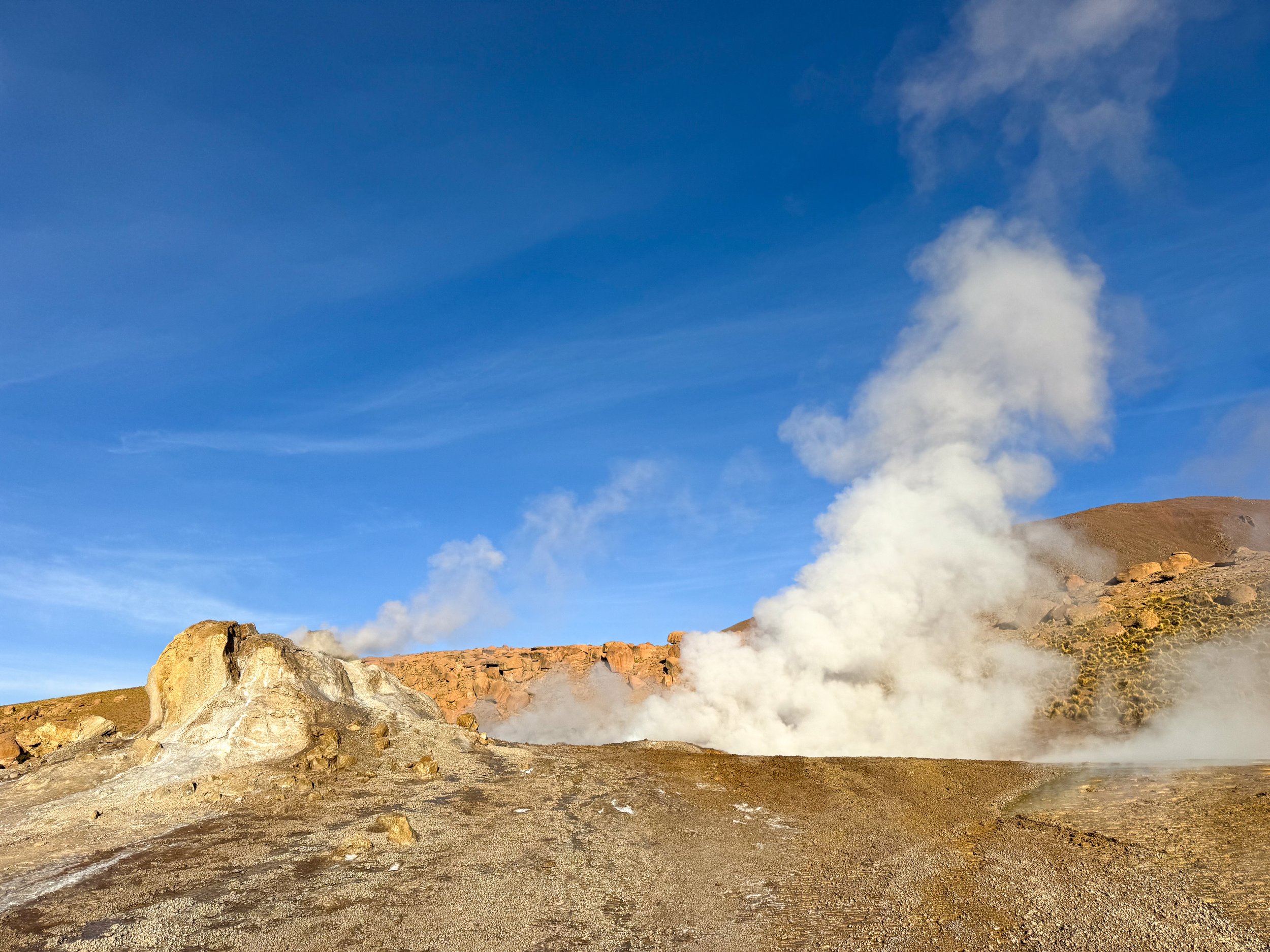
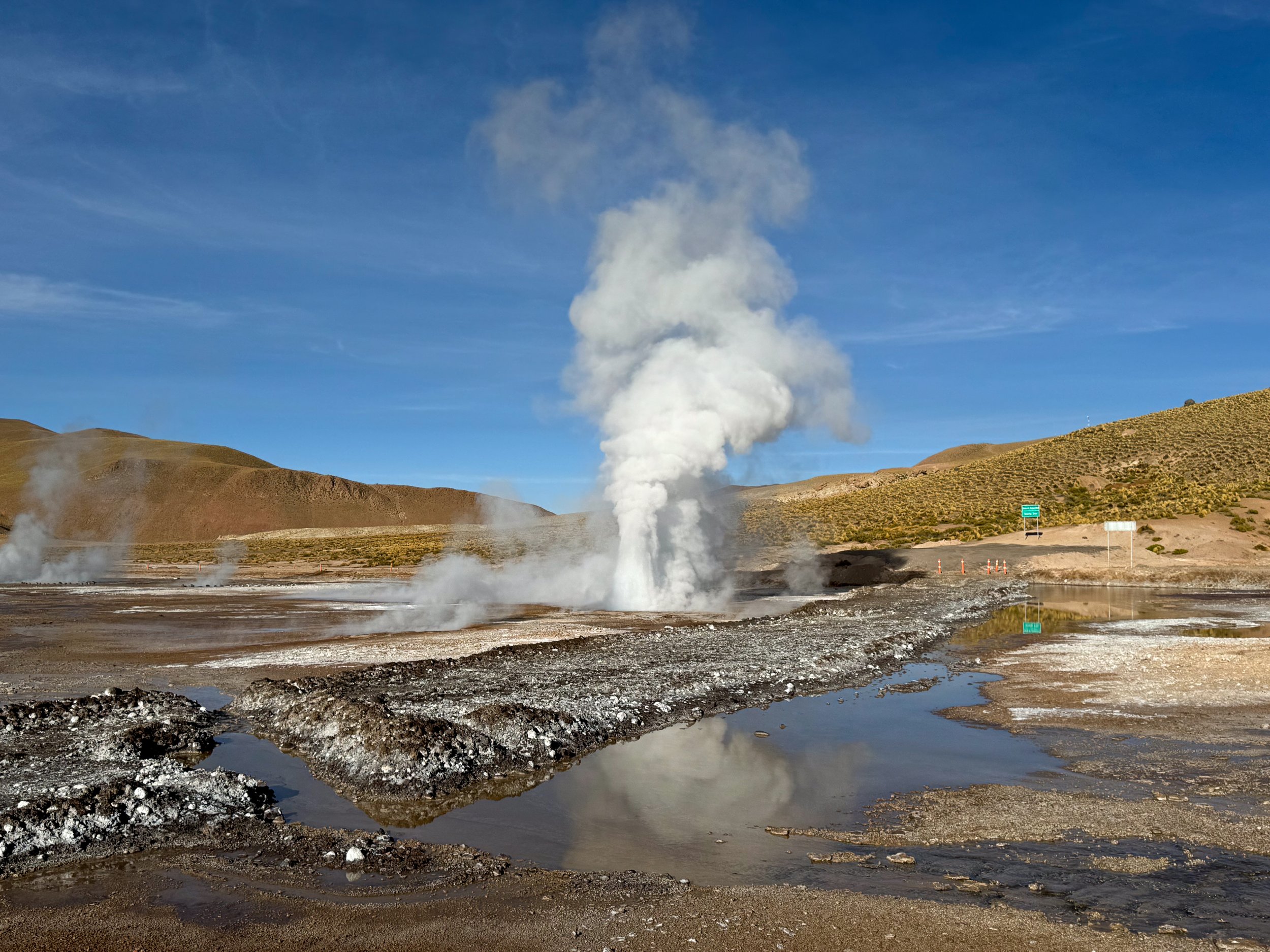
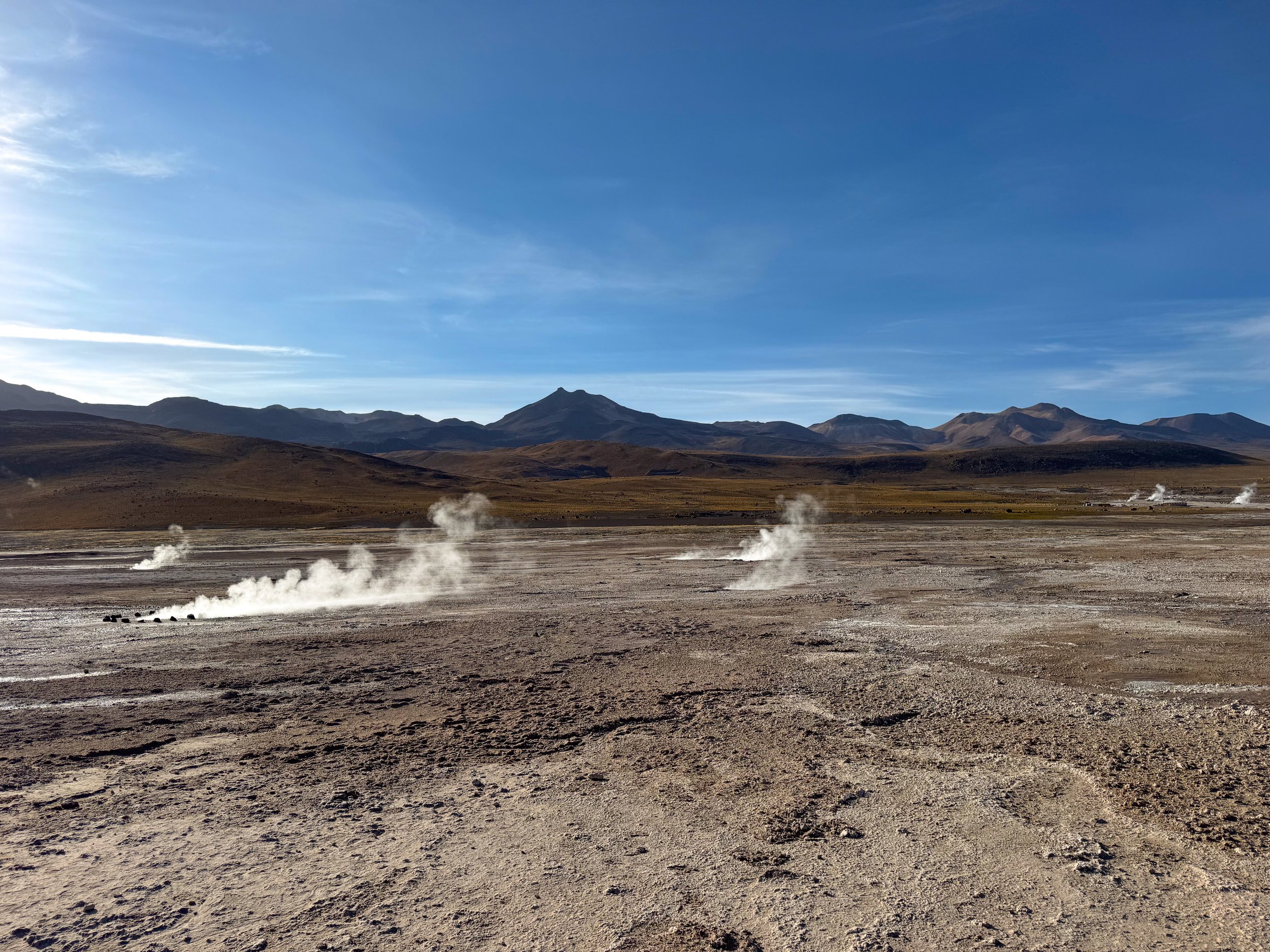
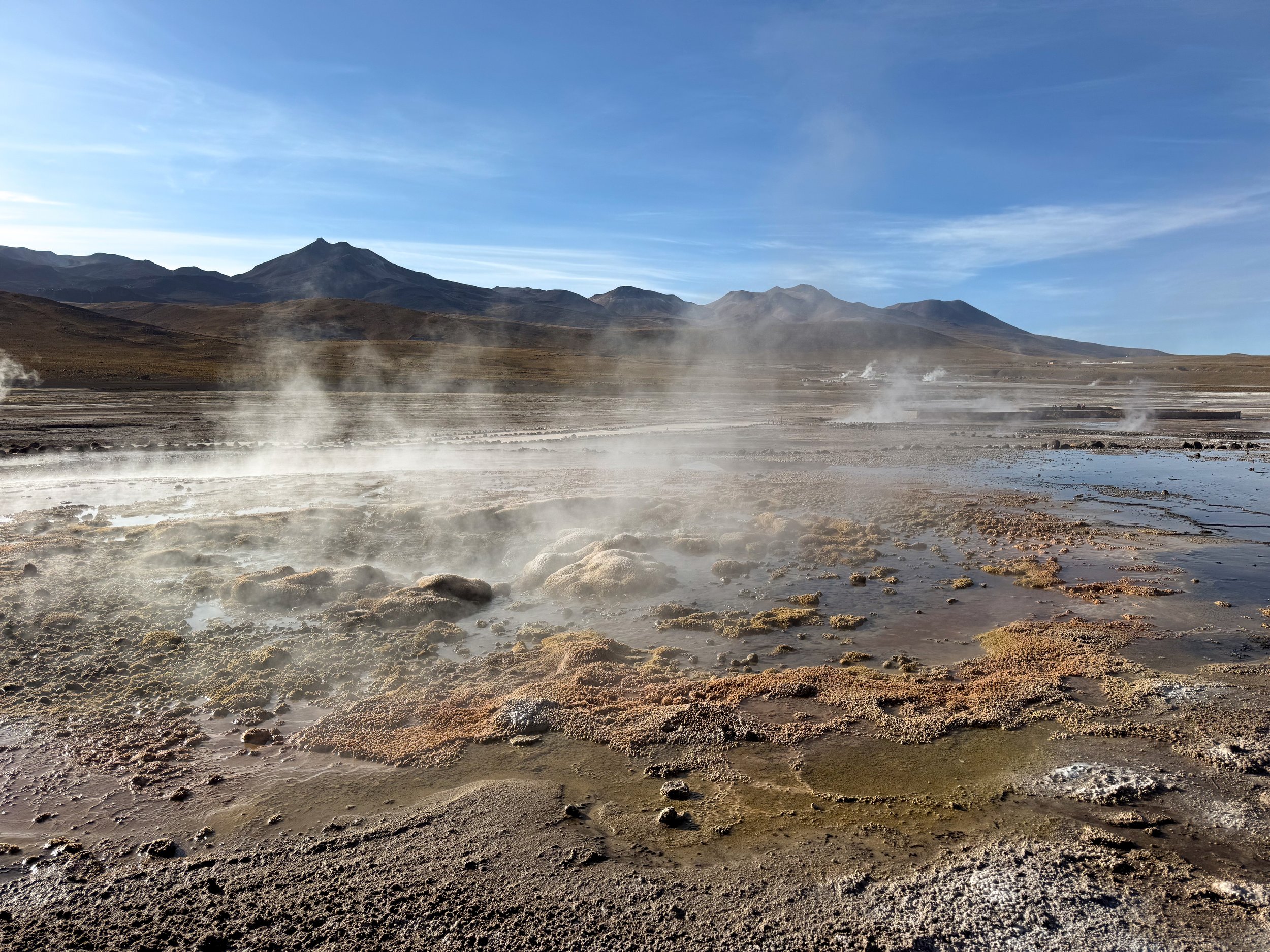
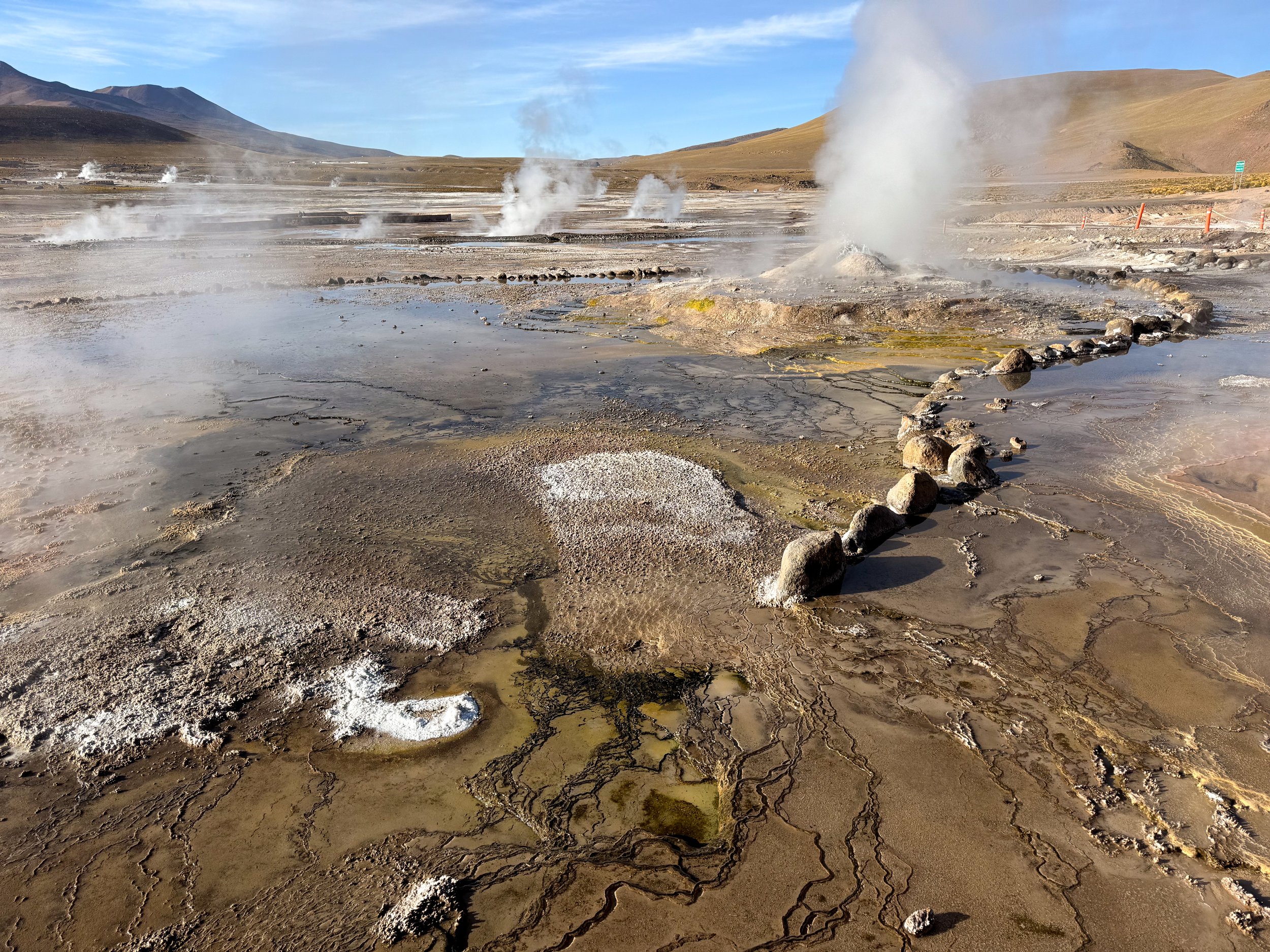
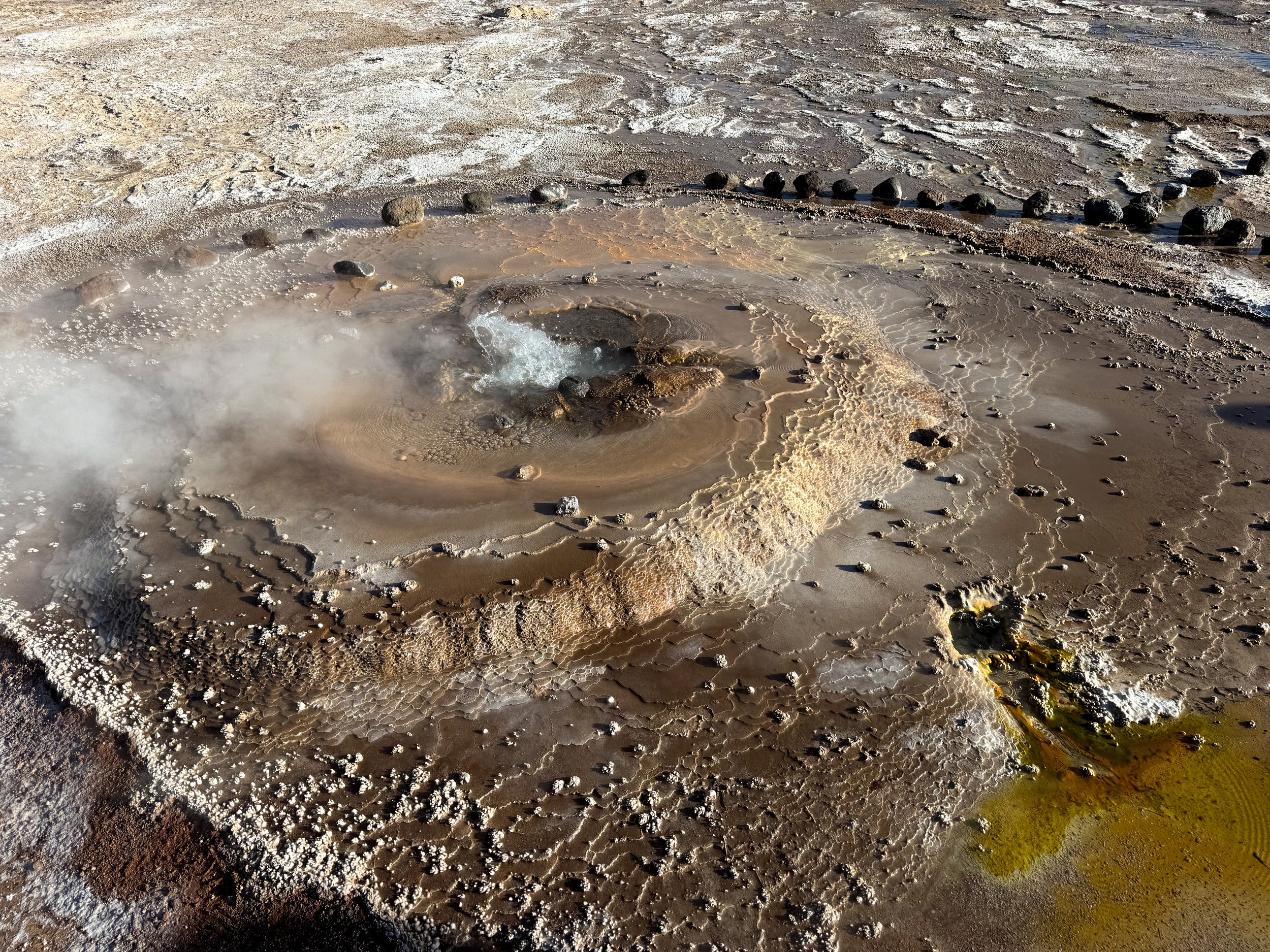


Geysers & Wetlands
El Tatio Geysers. A large geothermal field in a valley with dozens of steaming vents, bubbling pools, erupting geysers and streams of scolding water. The geysers are small but varied. Some erupt from cone like structures of sediment, others bubble and sputter from shallow pools of water and some steam from tiny holes. The frigid morning temperatures make the steam from the geysers most visible. In the extreme cold, boiling water erupting from the geysers freezes immediately creating sparkling streaks of ice. It was -8C the spring morning we visited so warm clothes and layers were a necessity.
Vado Putana Wetlands. A desert wetland at the base of the Cerro Pabellón Volcano where a variety of birds and wildlife acclimate to. We stopped to admire the green and yellow marshy landscape spotting flamingos, vicuñas, horned koot and blue beaked ducks.

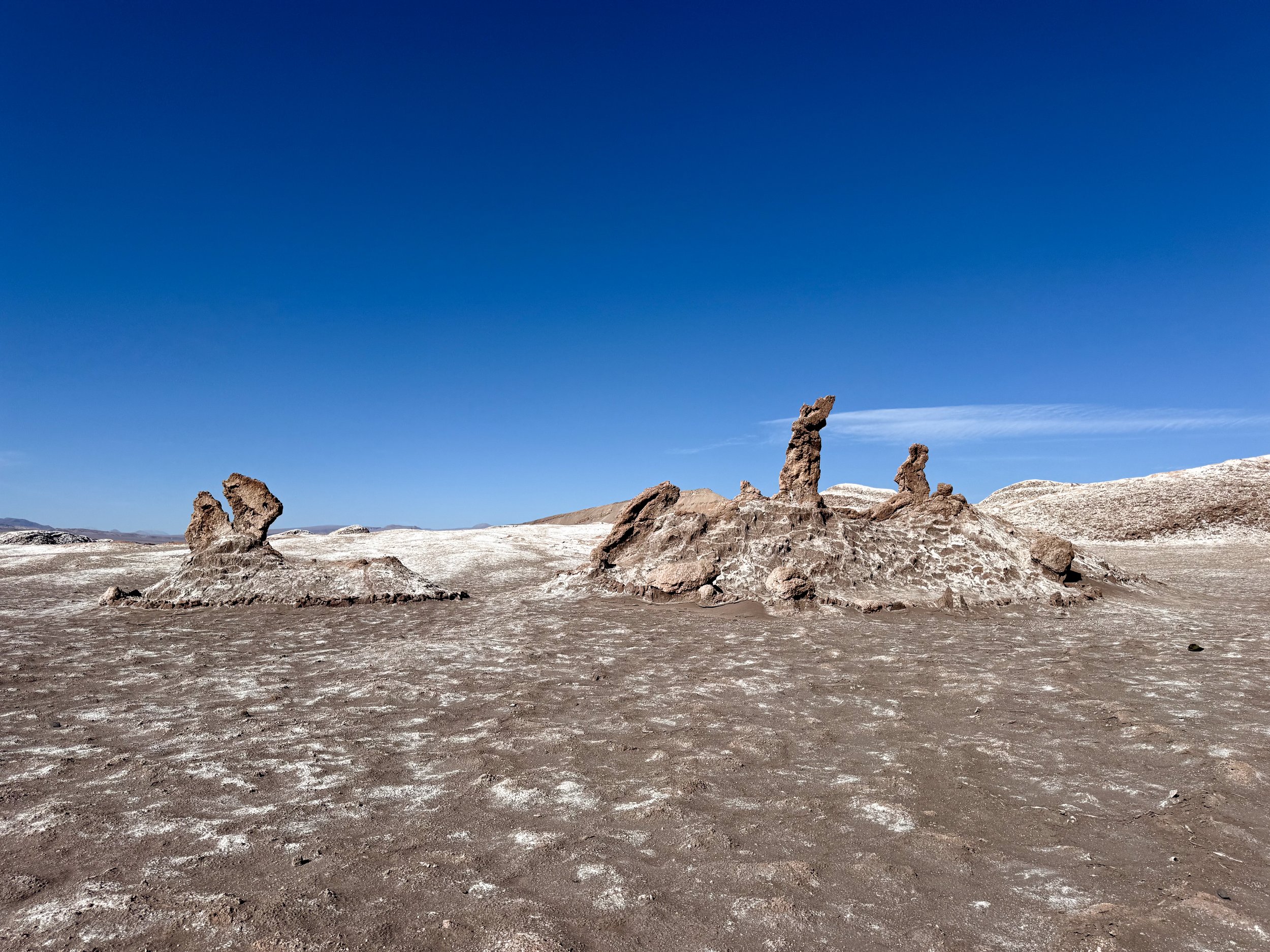





Rock Formations
Valle de la Luna (Moon Valley). A desert valley named after white dustings of salt over the valley’s surfaces, resembling the moon. We hiked through the valley, stopping to see rock formations, climb giant dunes and take in the view from scenic overlooks.
Mina Victoria. A former salt mining area to listen to the salt creaking and cracking as the afternoon temperature drops
Tres Marias. A rock formation that looks like two women praying with their hands up. The third Maria has eroded.
The Amphitheater. A large crescent shaped bluff with layers of brown, orange and salty sediment. We followed a trail leading along its base.
Duna Mayor. A massive tan and grey sand dune with a trail leading up to its crest overlooking the valley.
Good to Know. The park cannot be entered on foot. It can be entered by bike before 11am. Getting here by car our tour company is the best way to visit.
Mirador de Kari & Piedra del Coyote. A popular cliff side overlook to visit at sunset overlooking the Valley of the Moon and canyon below. On a windy day, the dust and sand blowing from the canyon below can be unbearable.
Desert Animals. The Atacama Desert and Chilean Andes are home to a variety of wild animals. On our tours across the region, we spotted several of the most common animals including Chilean flamingos, vicuñas, chinchillas, desert foxes, and ñandús.
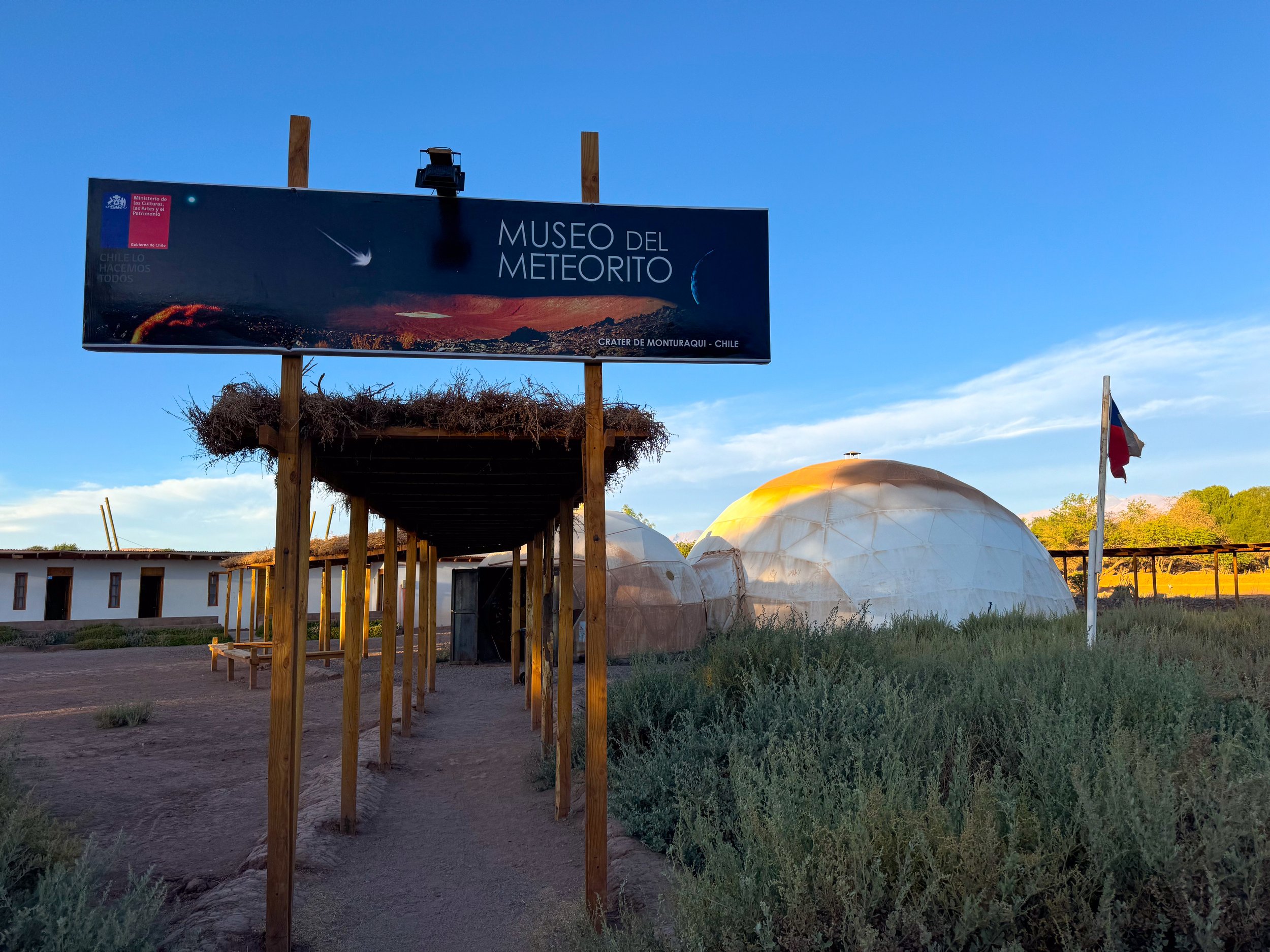

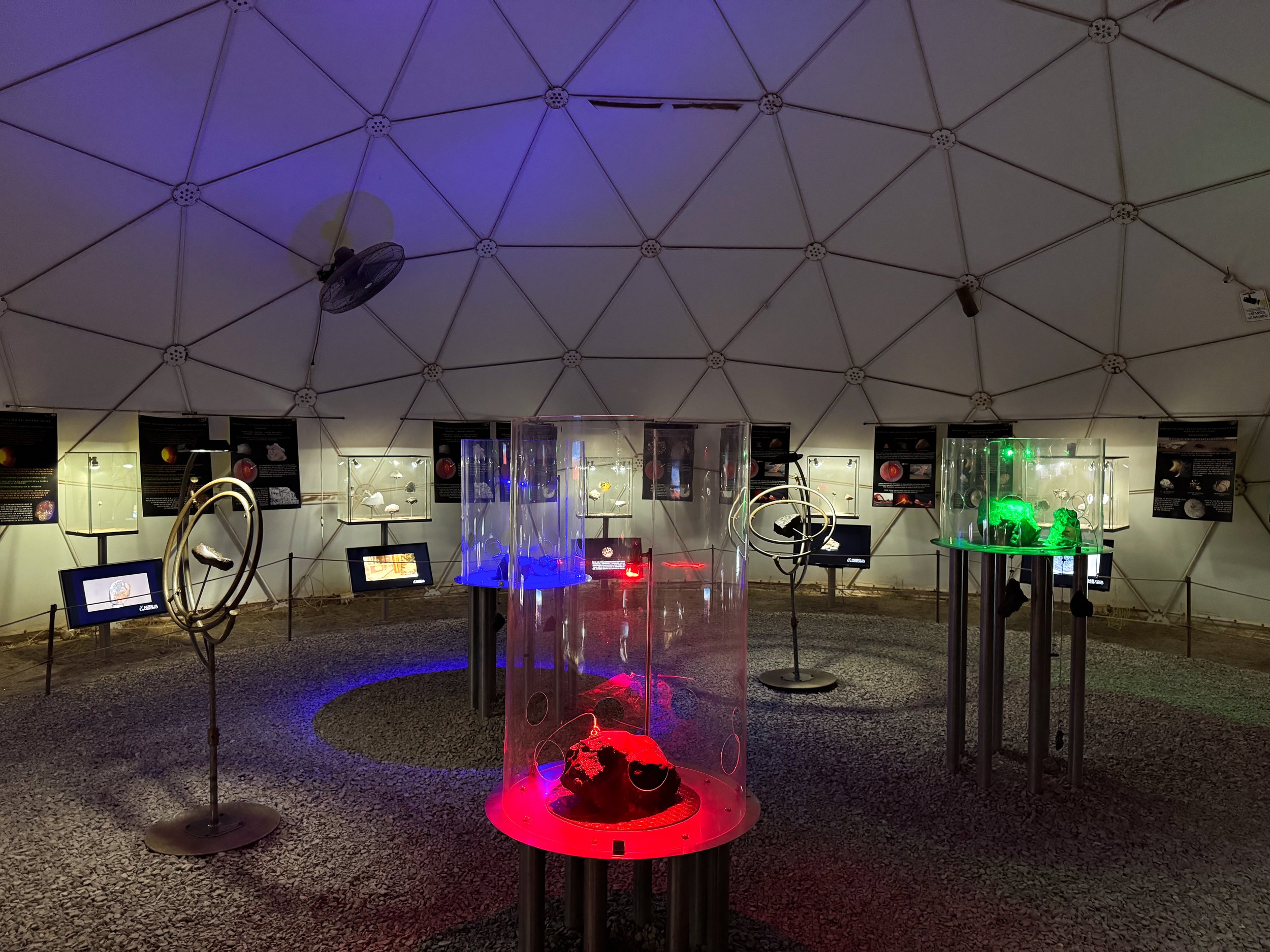

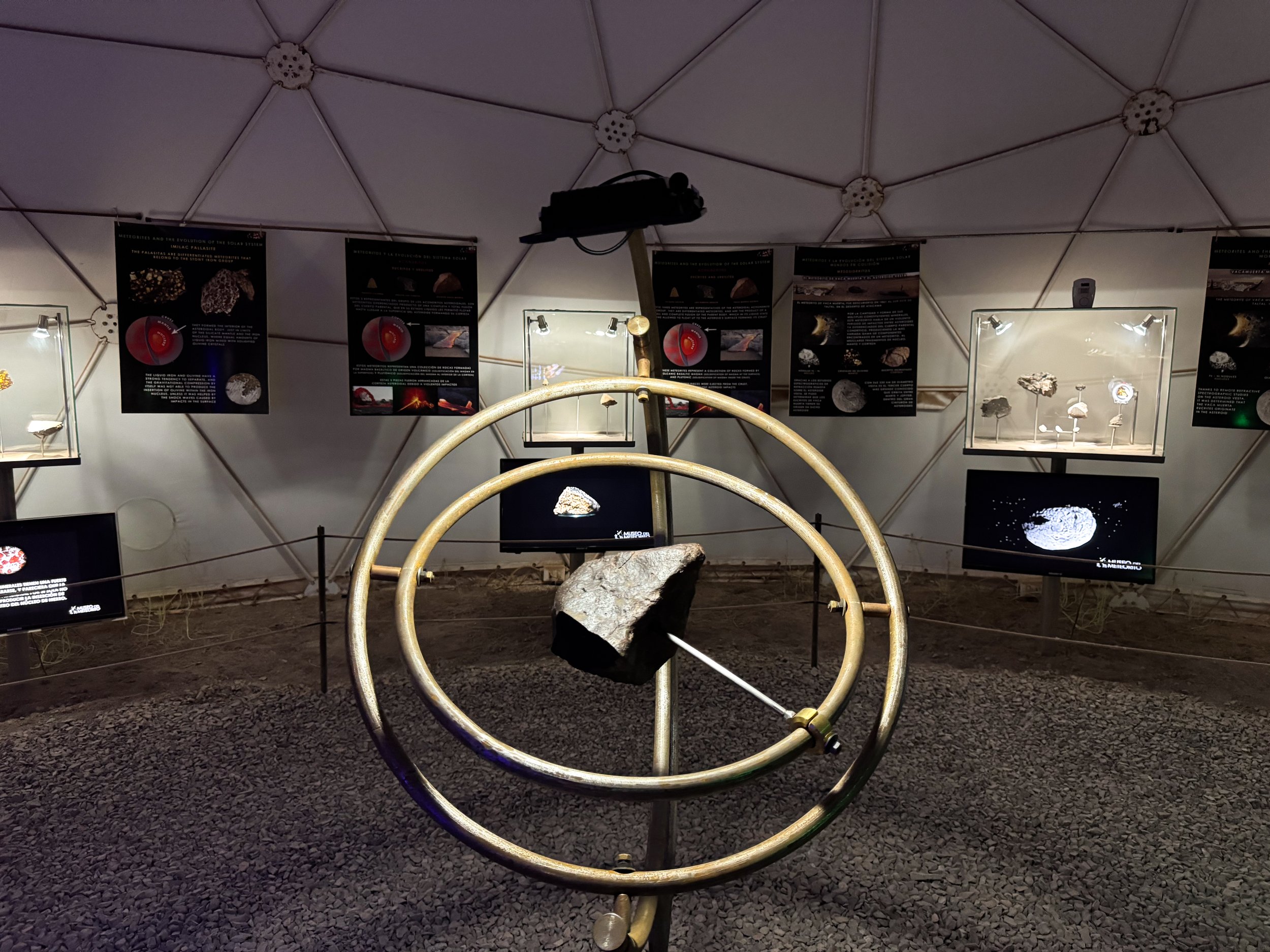


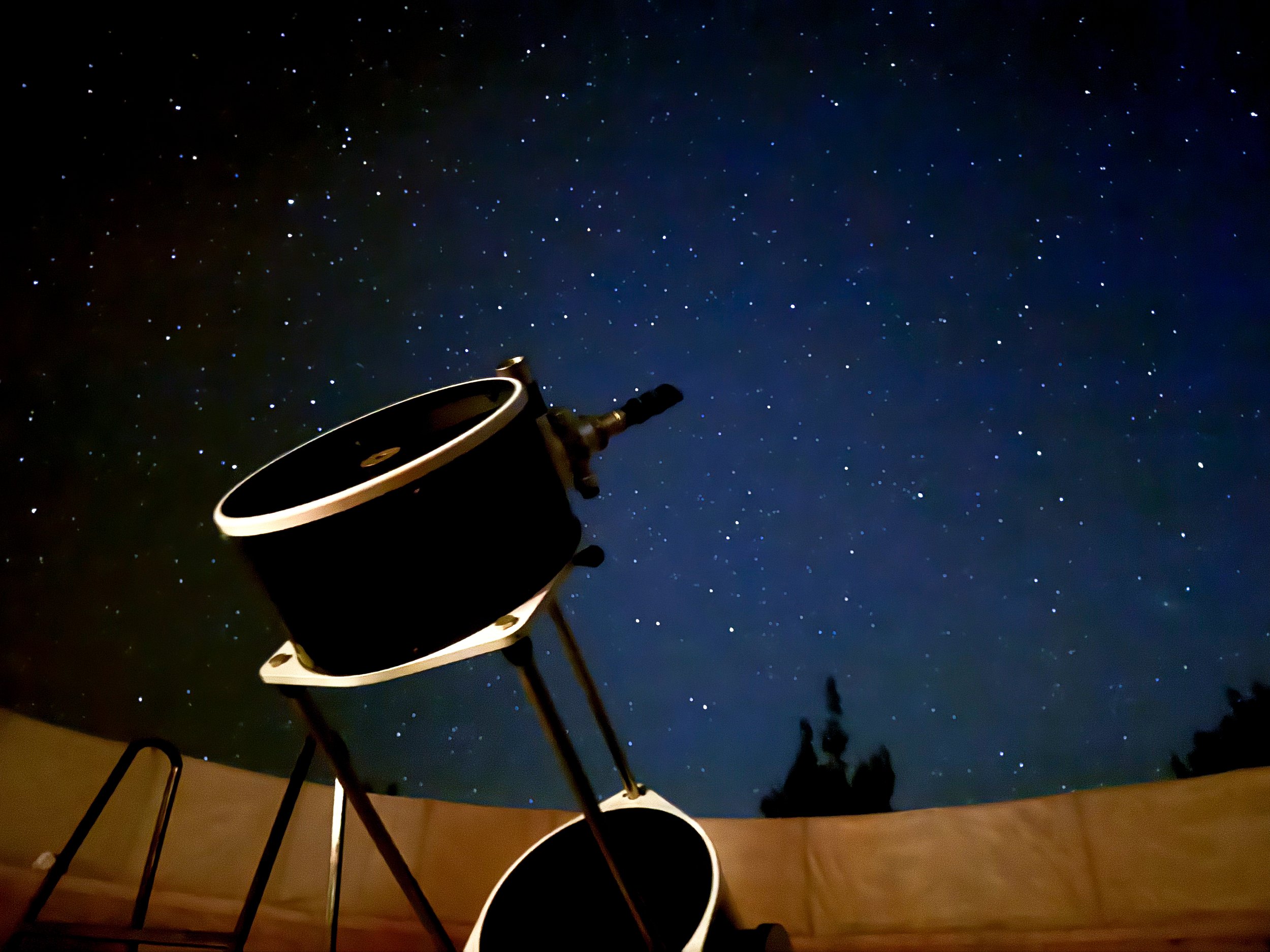
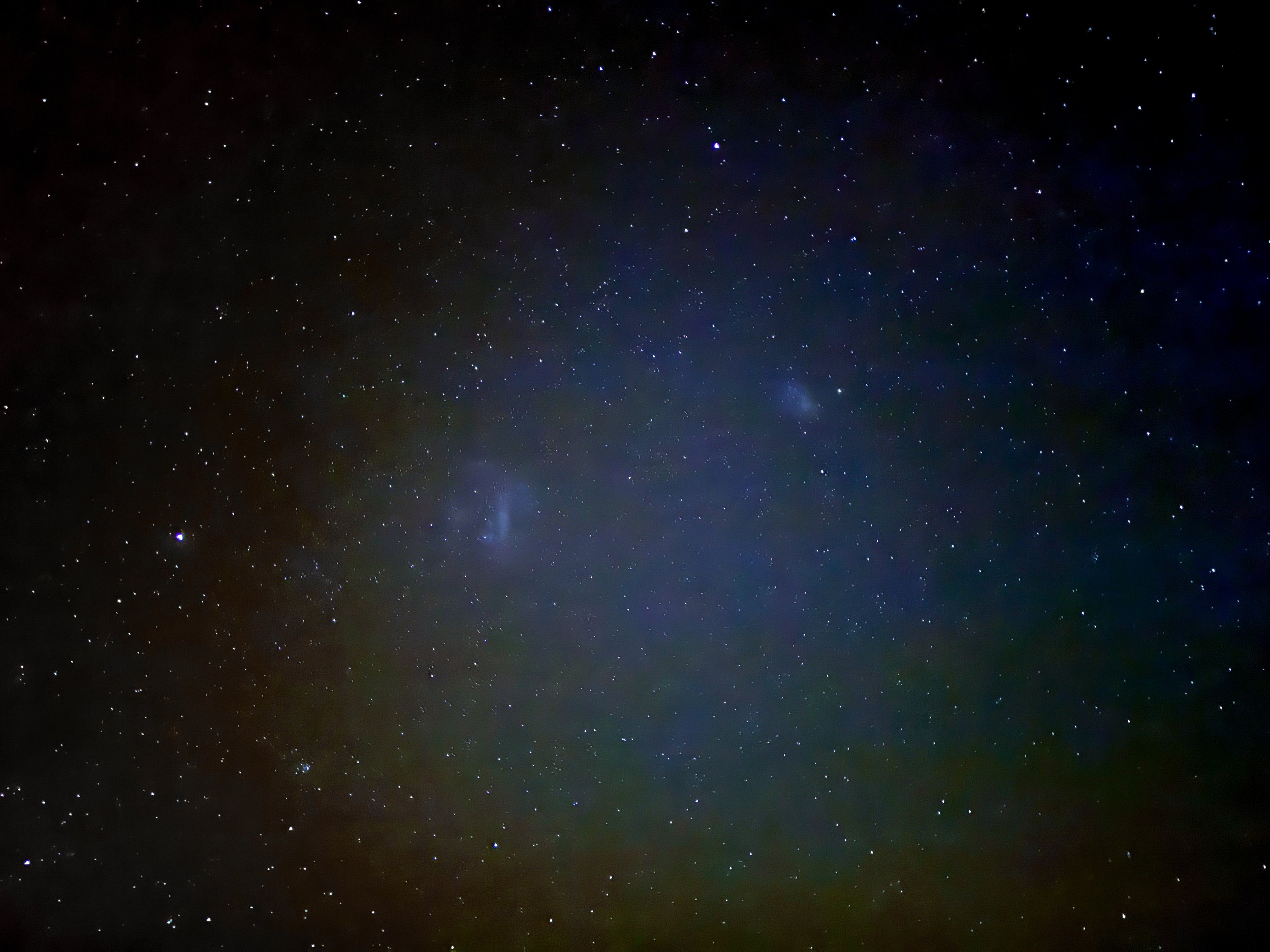

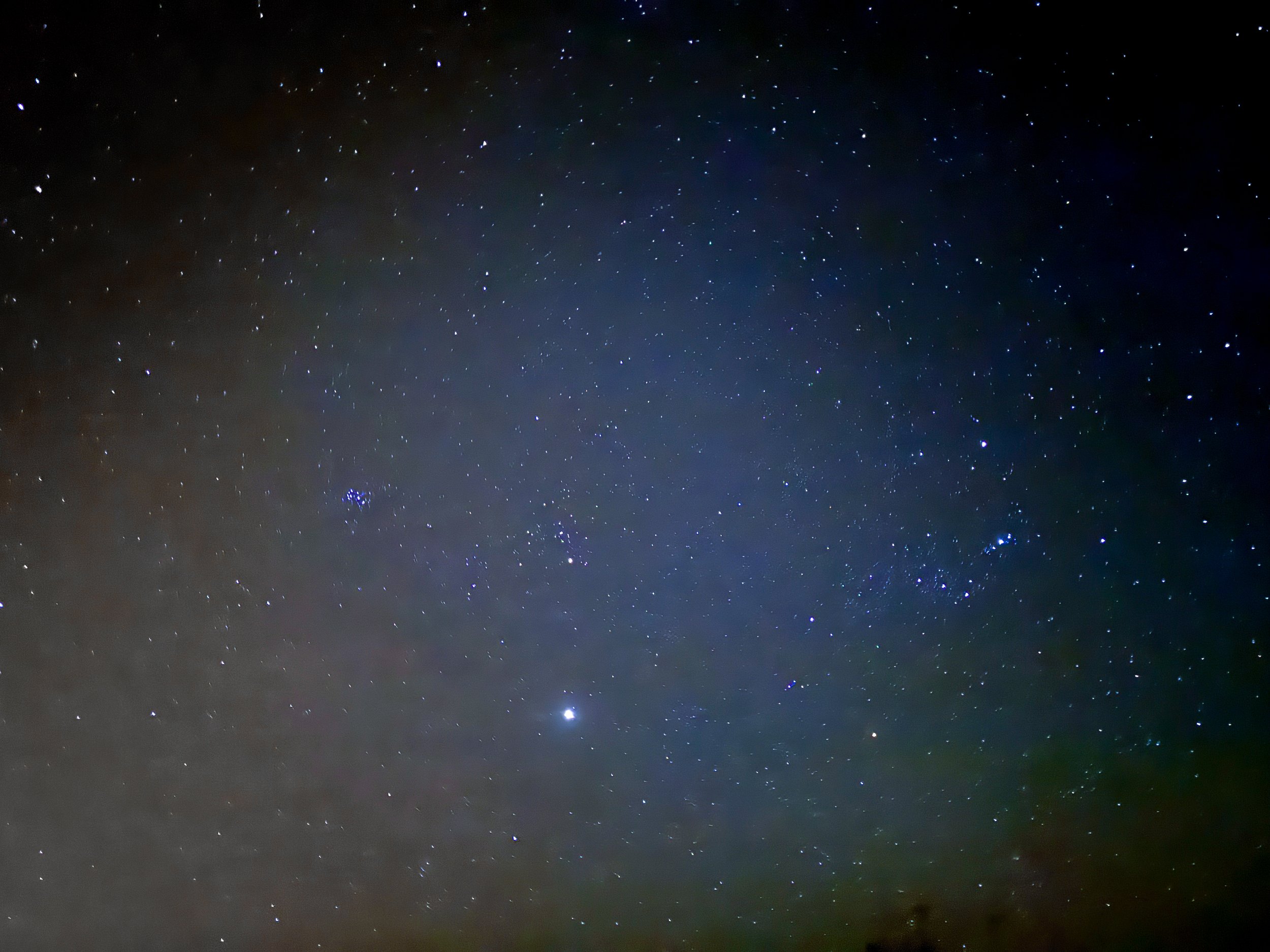

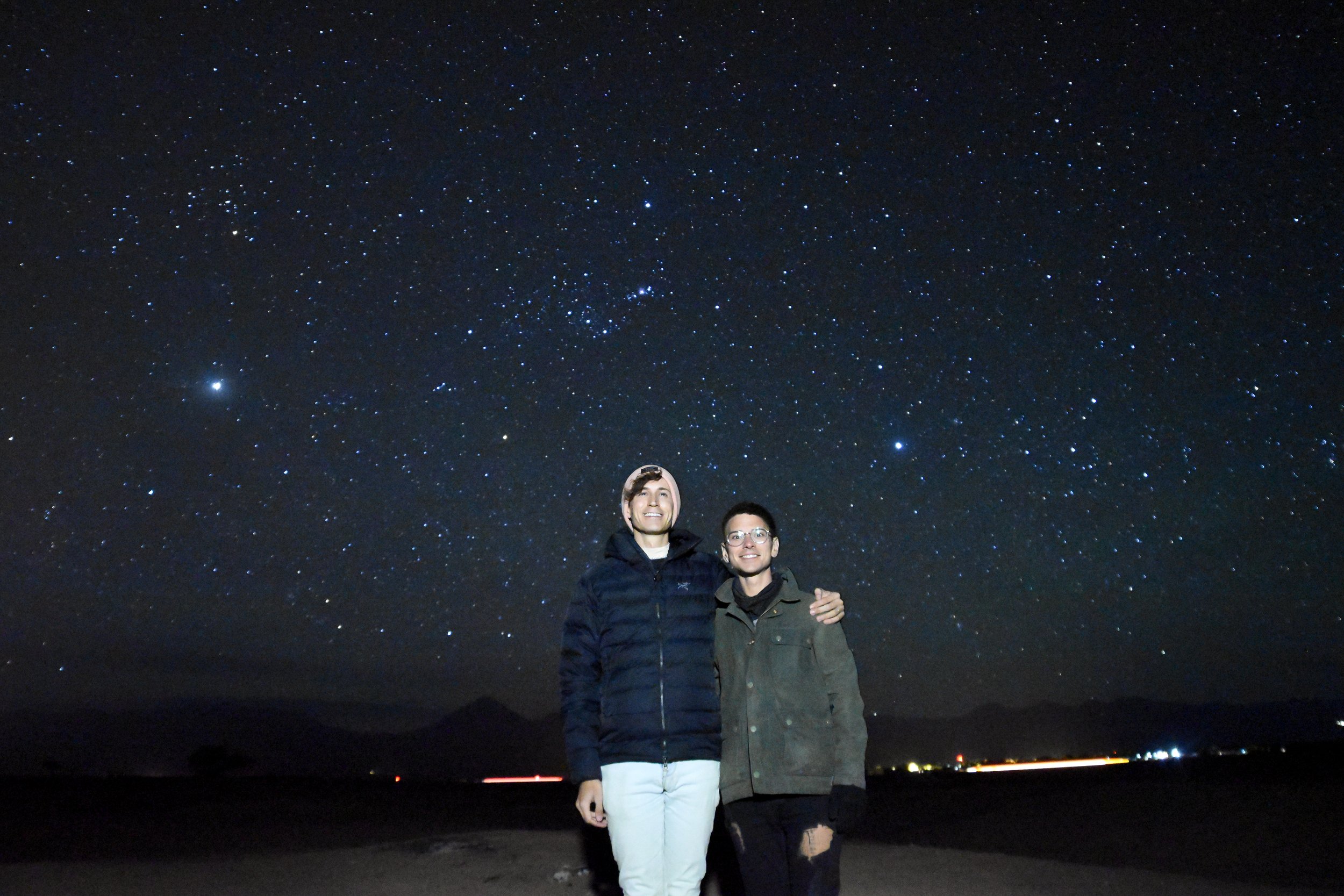

Astronomical Sights
Stargazing Tour. The Atacama Desert is one of the world’s designated dark sky regions. We took a stargazing tour and got to see meteors streaking across the sky, satellites orbiting and an incredible array of celestial objects!
Through three telescopes, the astronomers pointed out two nebula including the cloudy mass of the Orion Nebula and the cosmic veins of the Tarantula Nebula. We observed the blue star cluster of The Pleades and a globular cluster with over 6 million stars held together by a supermassive black hole. We spotted the fuzzy disk of the Andromeda Galaxy and the bright blue star, Achernar. They showed us the planet of Saturn, its rings and 2 of its moons as well as Jupiter and 3 of its moons. We ended the night with wine and photos under the dark sky.
Good to Know: Though the Atacama is a dark sky region, the conditions also need to be right. It’s best to stargaze when the moon is not visible. The light pollution is lesser the further away from San Pedro de Atacama.
Meteorite Museum. A museum in a geodesic dome housing a collection of meteorites, many of which are from the Chilean Atacama Desert. The guided audio tour explains the types of meteorites and their importance in building the inner planets of our solar system. Some are available to touch and there is even a small display case with slices of of Chilean meteorites for sale ranging in price from $10 to $200
Tour Companies
Dozens of tour companies operate along Calle Caracoles offering excursions throughout the Atacama. We booked our tours with multiple companies in person, on Viator and through Get Your Guide. Most tours offer pick up and include a table spread of food and beverages. Here are the tours we booked:
Where to Eat & Drink
Adobe. A beautiful restaurant with an outdoor patio surrounded by adobe brick walls and shaded by a thatched awning. We dined here at lunch while listening to live music and sipping on spiced Pisco Sours. To eat, we ordered traditional Chilean seafood dishes including the Southern Hake and Camarones al Pil Pil.
La Casona. A popular restaurant with nightly musical performances and an outdoor fire pit. We sat in their outdoor patio, listening to live music, sipping on cocktails and eating vegetarian versions of traditional Chilean dishes like Chorrillana and Pastel de Choclo.
Helderia Babalu. An Ice cream and gelato shop serving a range of Chilean and inventive flavors. We came here three times, trying several flavors like: pineapple-mint, orange-ginger, prickly pear, quinoa lèche, lucuma (similar to passion fruit) and tres leches.
Emporio Andeno. A cafe and empanaderia with coffees and a list of over a dozen empanadas including vegetarian versions the Champiñón made with mushrooms, corn and cheese or the Vegano Verde made with mushrooms, spinach, corn salsa and vegan béchamel.
Karavan Restobar. A restaurant & bar with adobe booths & tables, live music, local dishes and fresh juices. We ordered a few afternoon snacks, Bolitas de Queso y Jalapeño and Sopaipillas with pico de gallo. For drinks, we sipped on fresh pressed lemonade rica rica and passion fruit juice.
La Picada Del Indio. A popular restaurant and bar. Come here for all day happy hour in their back patio, two cocktails for 8,000 Chilean pesos.
Charrua. A pizzeria with a range of thin crust pizzas. We ordered a classic margarita and quarto cheeses, each with rica rica seasoning. It was our first pizza in nearly 3 months and did not disappoint!
La Franchuteria. A bakery and cafe with a peaceful dining area in a lush outdoor patio surrounded by tiny chirping birds. Come here for their pasties, quiche and fresh breads, especially the baguettes sand baguette sandwiches!
El Barro. A beer garden style restaurant with a large shaded patio. Come here for their affordable pre-fix menus and generous portions. Try the ceviche, fried fish, daily desert and red sangria.
Chilean Cuisine
Chorrillana. A traditional Chilean dish made from French fries covered with meat or vegetables and topped with artichoke hearts and cherry tomatoes.
Pastel de Choclo. A Chilean version of shepard’s pie made with a mixture of sautéed vegetables and meat topped with a creamy corn pudding and broiled.
Pil Pil. A traditional style Chilean dish made from meat, seafood or mushrooms cooked in a spicy and savory sauce flavored with garlic and chili cacho de cabra. It’s typically served with papas doradas.
Sopaipillas. Fried flat breads served with a sweet or savory topping like jams, salsa or ceviche. It’s often served as a snack or appetizer.
Bolitas de Queso. Deep fried balls of cream cheese. It’s often served as a snack or appetizer.
Fresh Juice. Freshly pressed fruit, herb and veggie juice blends are incredibly popular across the town with dedicated juice bars and menus dedicated to juices as restaurants.
Rica Rica. A popular herb used in many dishes that tastes and smells similar to oregano.
Olives. Olives and olive oil are typical ingredients in many dishes. Most restaurants even serve olive oil table side with meals.
Wine. Chile has several grape growing regions used to make wine. Malbecs & Merlots are the most common.
Where to Stay
Desert Eco Dome. We stayed in an eco dome outside of the city center that we found on Airbnb. The white domed structure houses a kitchen, living room and lofted bedroom. The desert property has an adobe house, outdoor hammocks and shaded lounge areas. Book here!
Getting Around
On Foot. The town of San Pedro de Atacama is easily walkable. Everything is within 1km of the main street, Calle Caracoles.
By Bike. Several companies around the city center rent bikes by the day. This is a great option to visit sights in the outskirts of the city without a tour.
By Tour. The most efficient way to visit sights across the region is by tour. Tours offer pick up from accommodations, via a sprinter van and return to the city center.
Airport Transfer. Most flights in and out of San Pedro de Atacama leave from the town of Calama 1 hour 30 minutes away. We booked a transfer with Ruta Chile. Book here!
Good to Know
Drinking Water. Tap water to generally not safe to consume in San Pedro de Atacama. It’s best to drink filtered or bottled water.
Toilets. Like most places in South America, signs advise people not to flush toilet paper due to risk of clogging the plumbing.
Cash vs Card. Many businesses accept credit card but cash is often preferred.
Exchanging Cash. If exchanging US dollars for Chilean Pesos, make sure the bill is in perfect condition (no minor tears or makings) or it will not be accepted.
Language. Spanish is the dominant language however English and Portuguese are commonly spoken.
LGBTQ+ Safety. San Pedro de Atacama is very friendly to and accepting of queer travelers and locals.
A Weekend in Santiago
Santiago is an enchanting metropolis with colorful city streets, lush hilltop parks, historic buildings, towering skyscrapers and views of the Andes Mountains. It’s a hub for Chilean wine and cuisine, queer nightlife and cultural sights.
Santiago, Chile
Santiago is an enchanting metropolis with colorful city streets, lush hilltop parks, historic buildings, towering skyscrapers and views of the Andes Mountains. It’s a hub for Chilean wine and cuisine, queer nightlife and cultural sights. We spent a weekend exploring the city, getting a taste of what it has to offer and leaving with a strong desire to return.
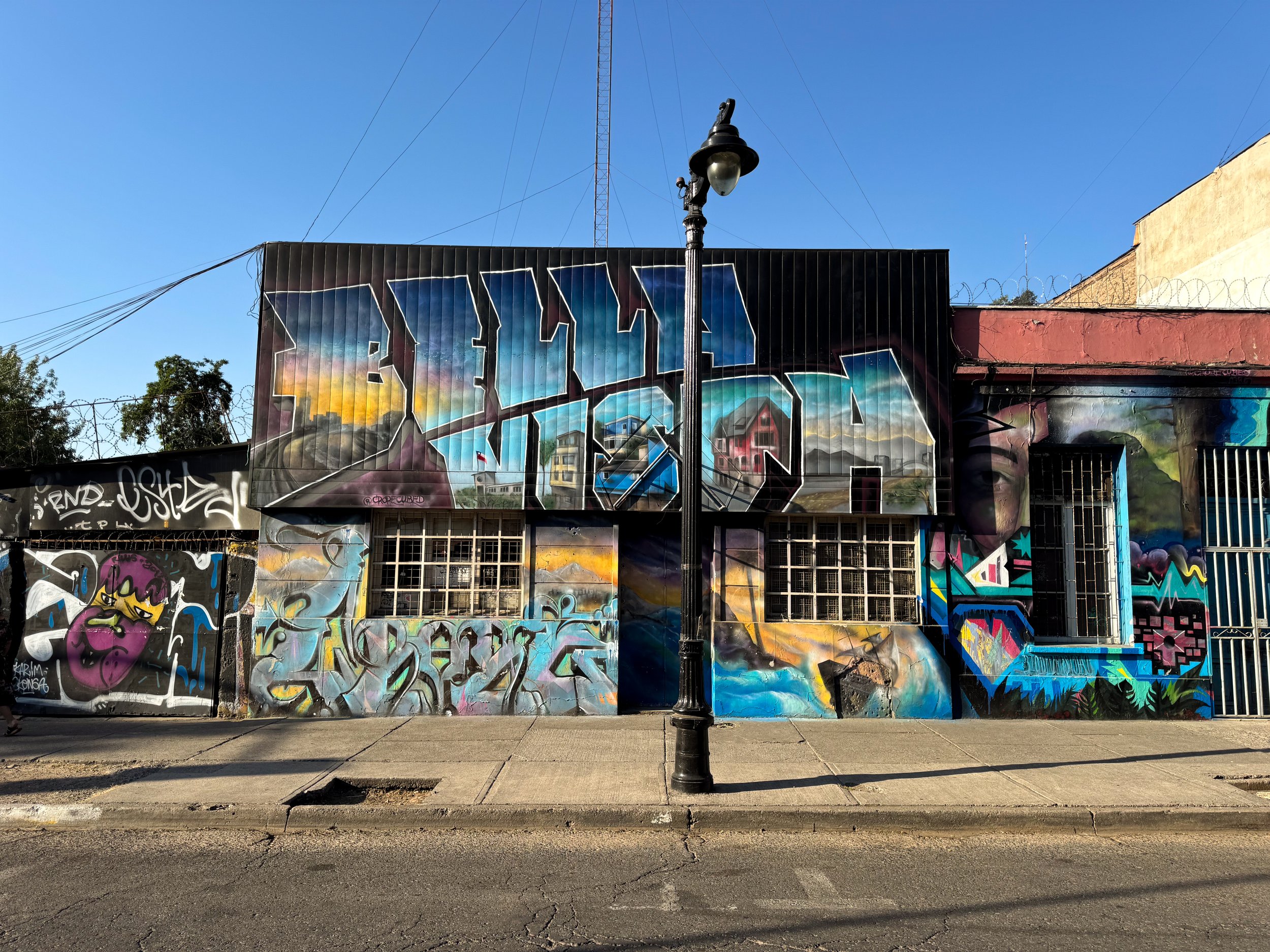
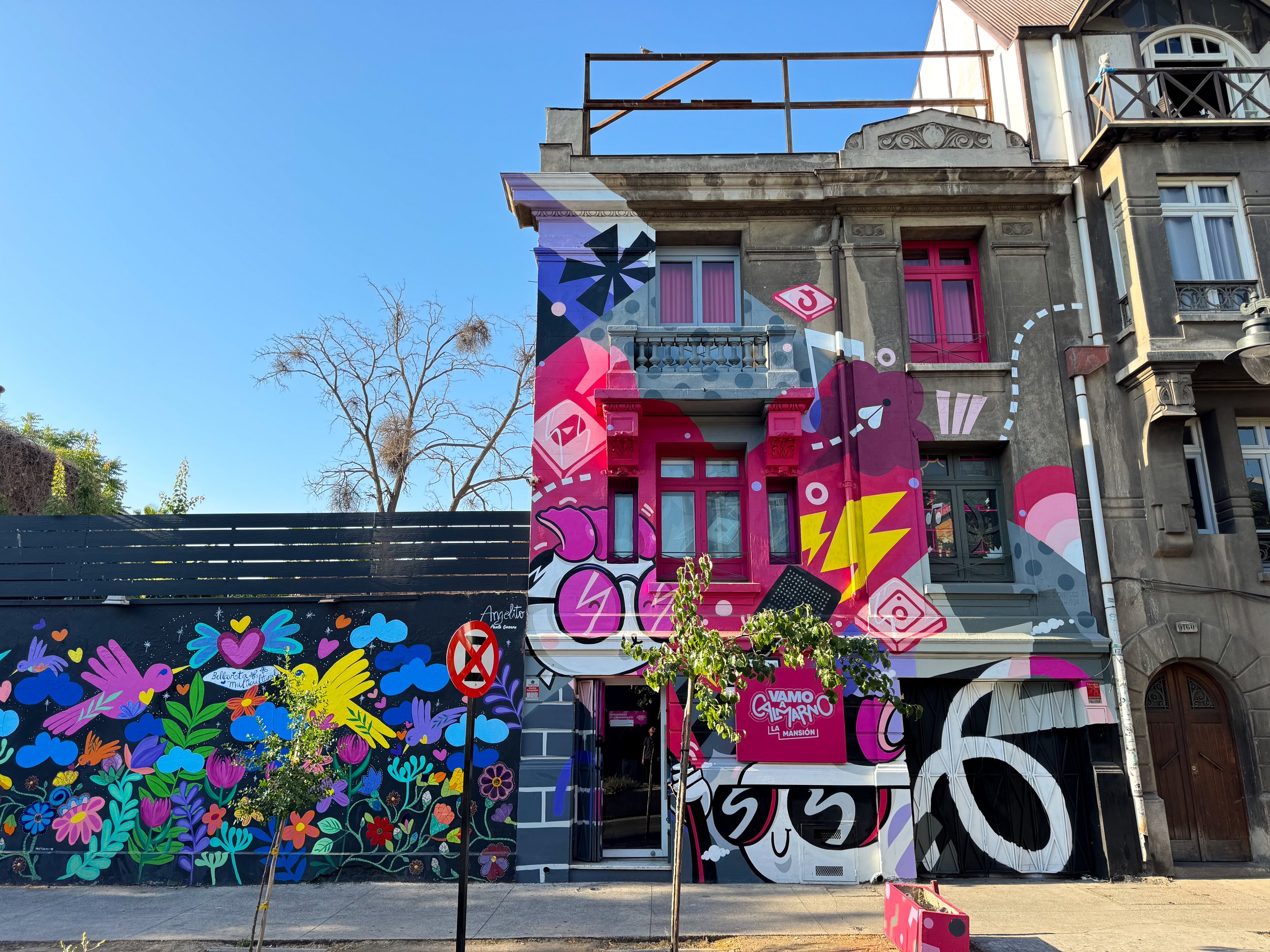
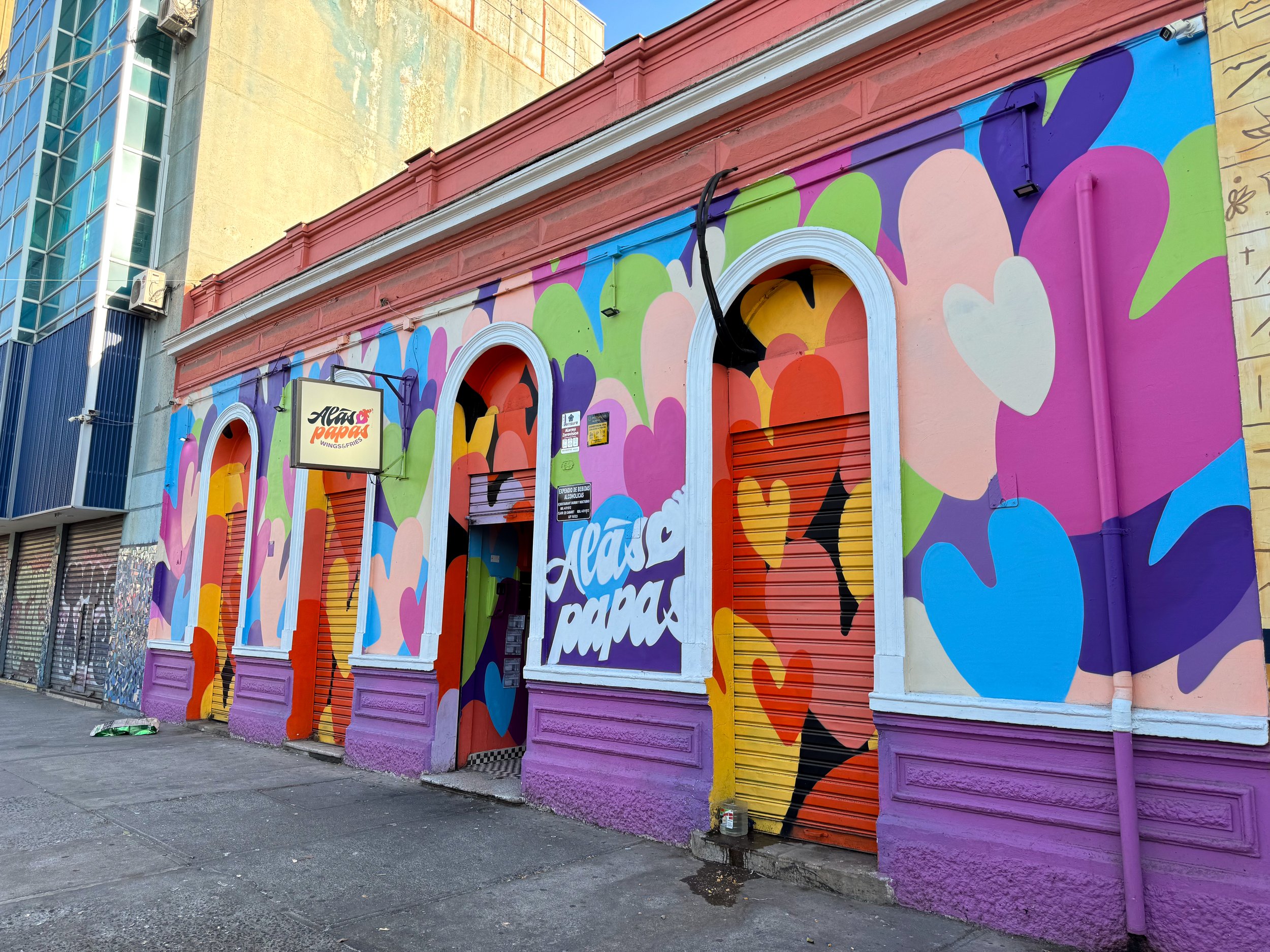
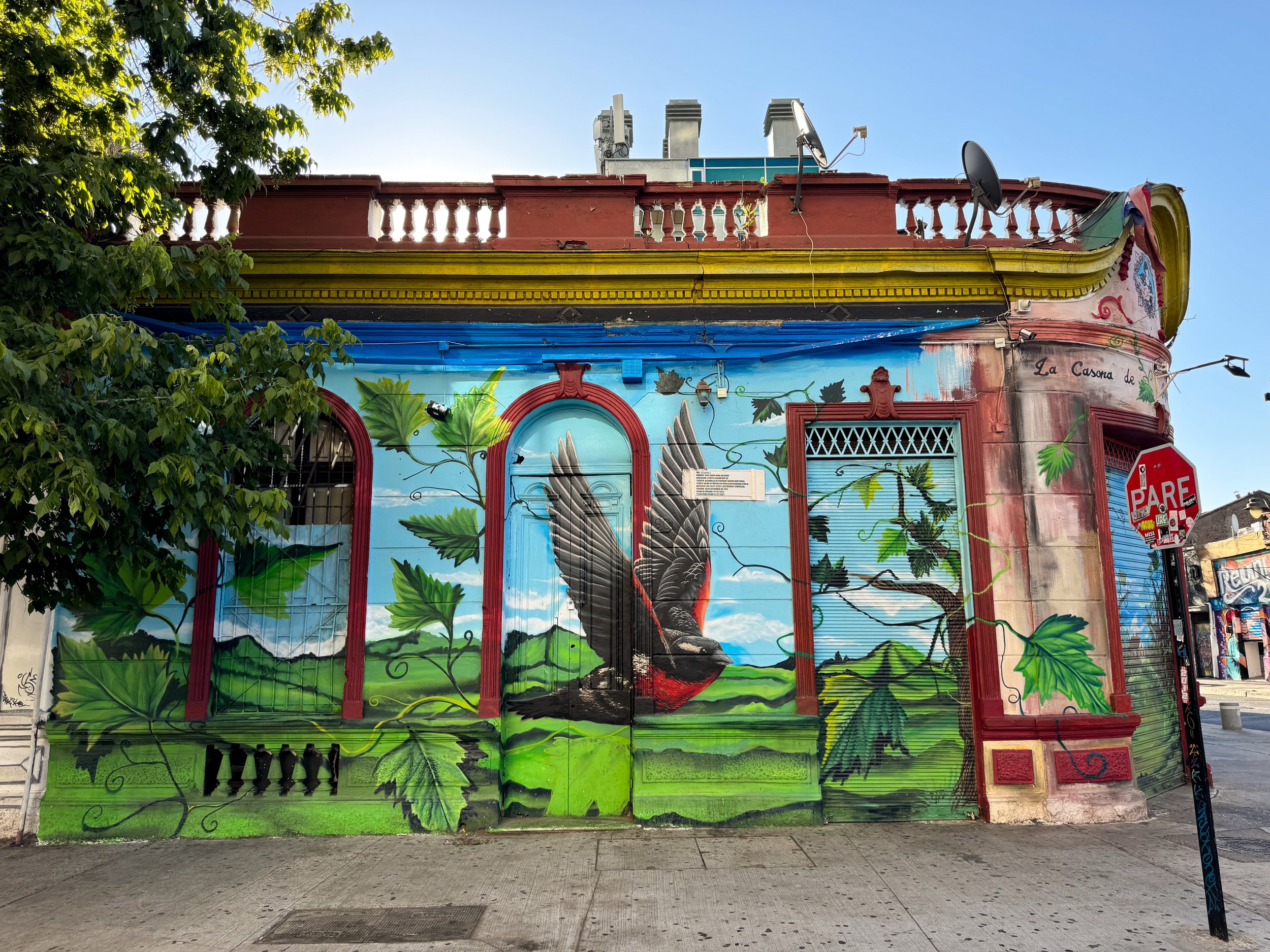
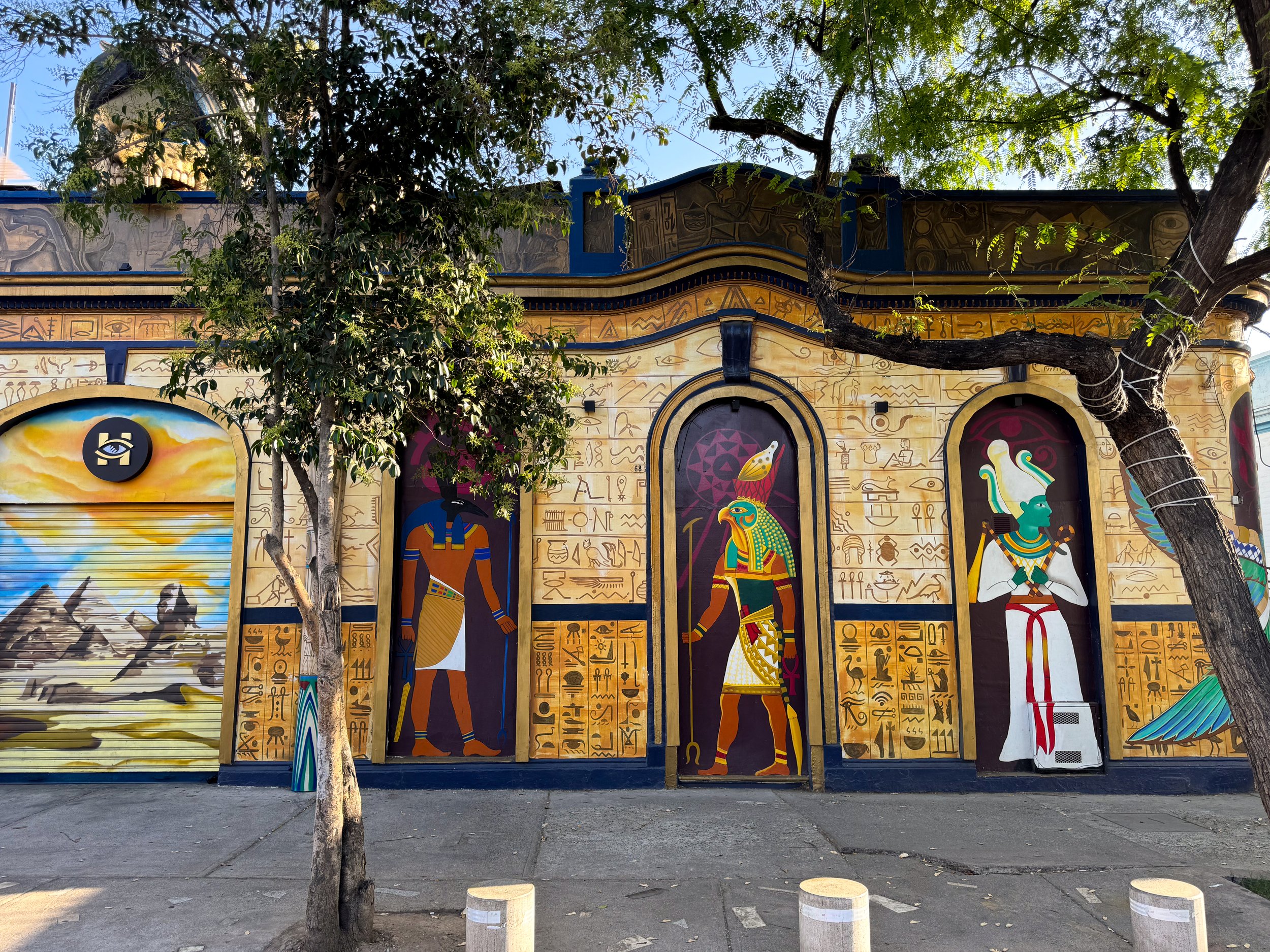
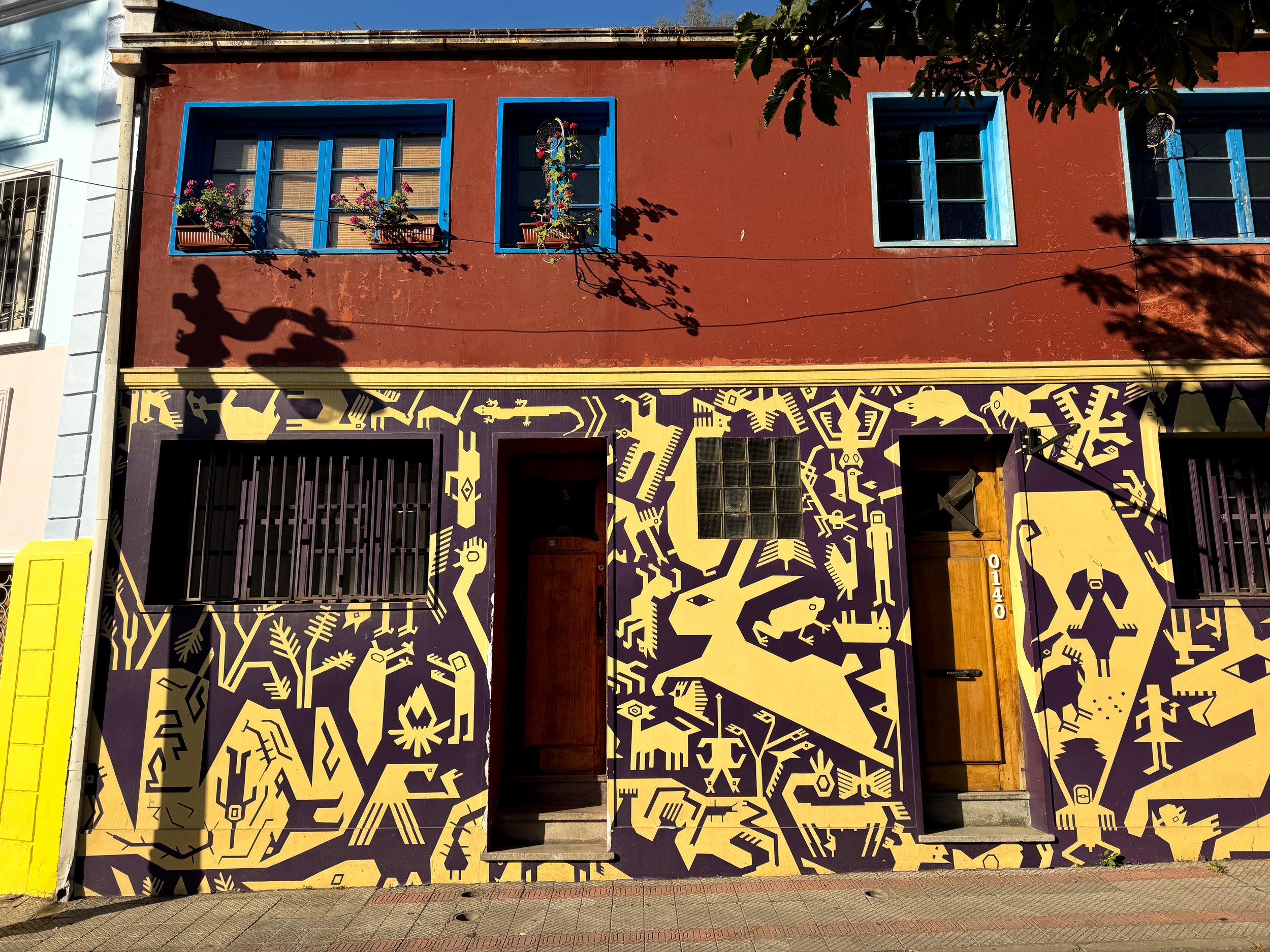
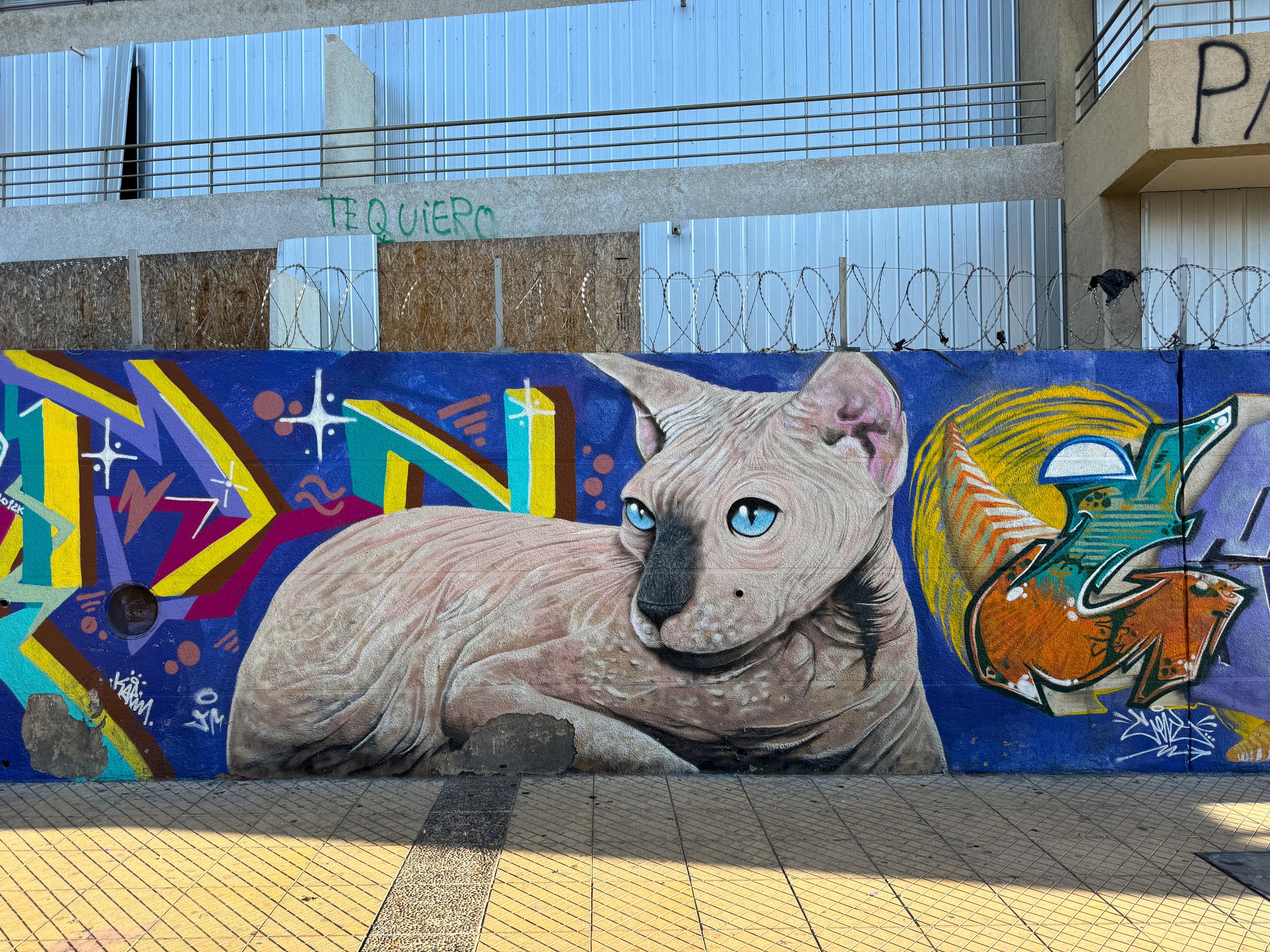
Neighborhoods
Barrio de Bellavista. A charming neighborhood with treelined streets, colorful historic homes, cute coffee shops and main streets painted in murals and graffiti. The neighborhood is a cultural hub that comes to life at night! Local cuisine is served at Chilean restaurants, fans cheer on their favorite soccer teams at sports bars, glammed up drag queens perform at queer friendly bars and mixologists shake cocktails late into the evening.
Lastarria Neighborhood. A small and trendy neighborhood with cobble stone streets, colorful ornate buildings, high end restaurants and Chilean wine bars. It’s a calm area to walk around, stop for a glass of wine or dine at a sidewalk patio. To us, it feels very similar to the cute streets of the West Village in NYC.
Centro Historico. The historic center of Santiago with tree lined plazas, ornate stone buildings, cultural sights and museums.
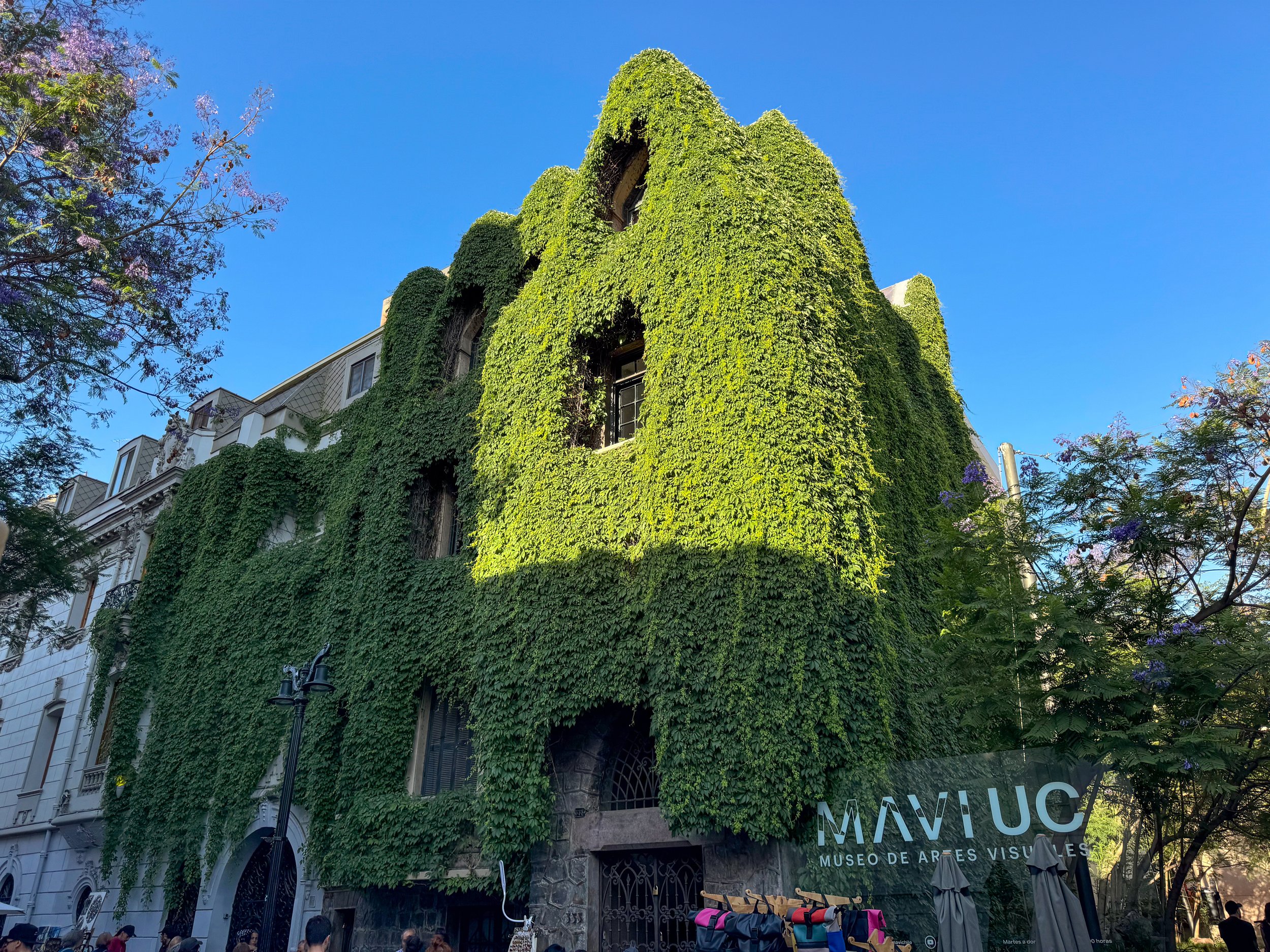
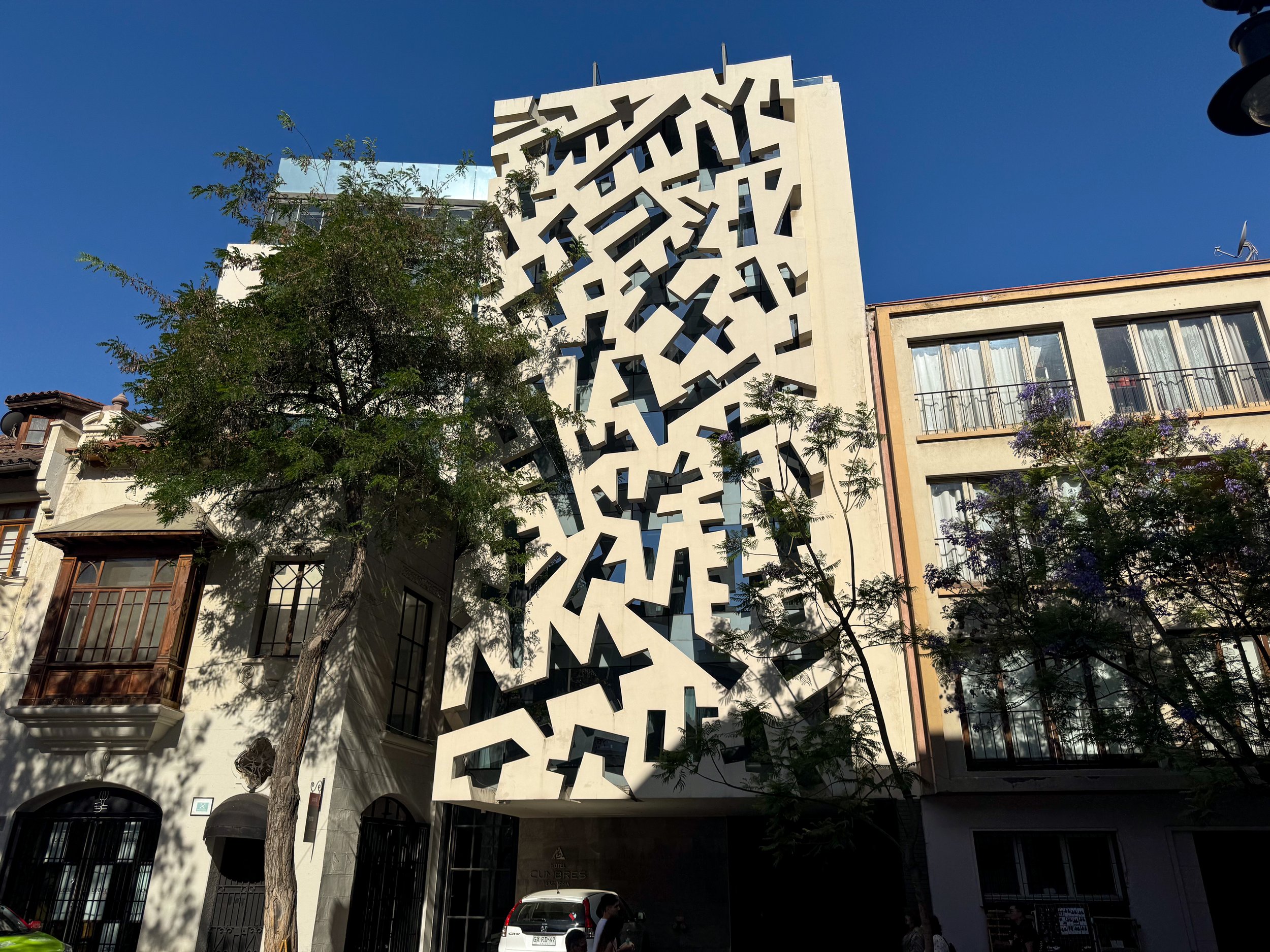

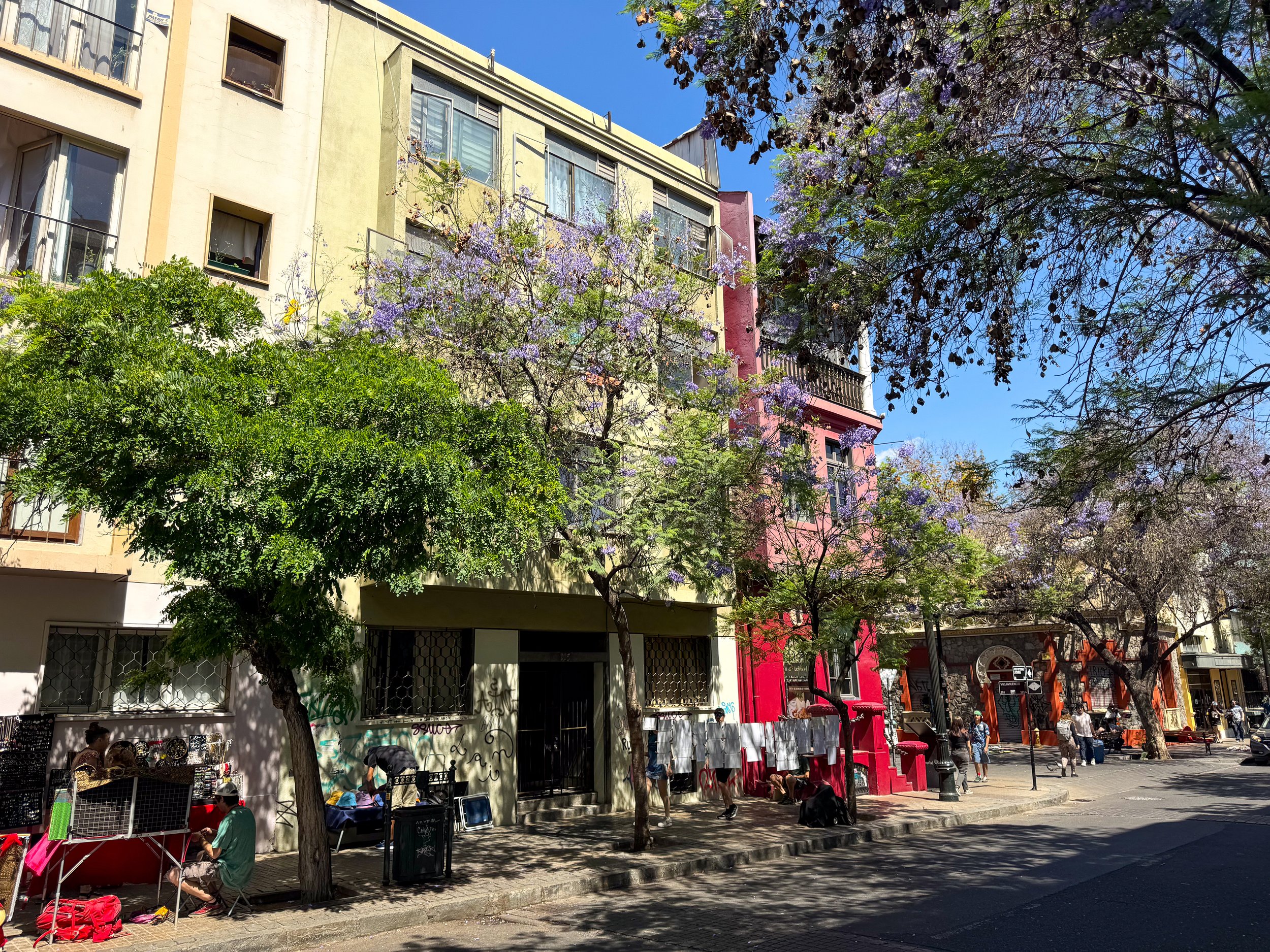
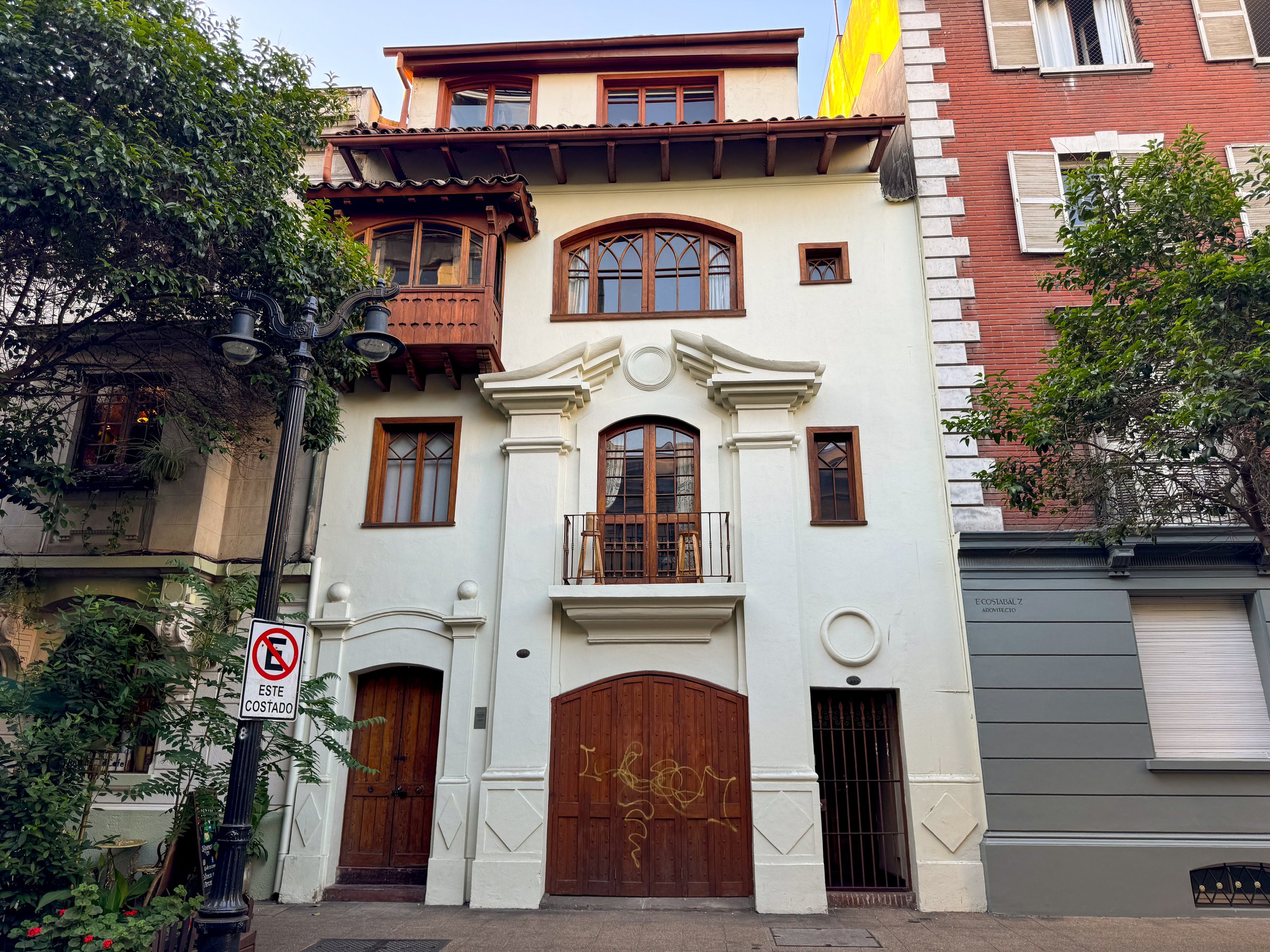
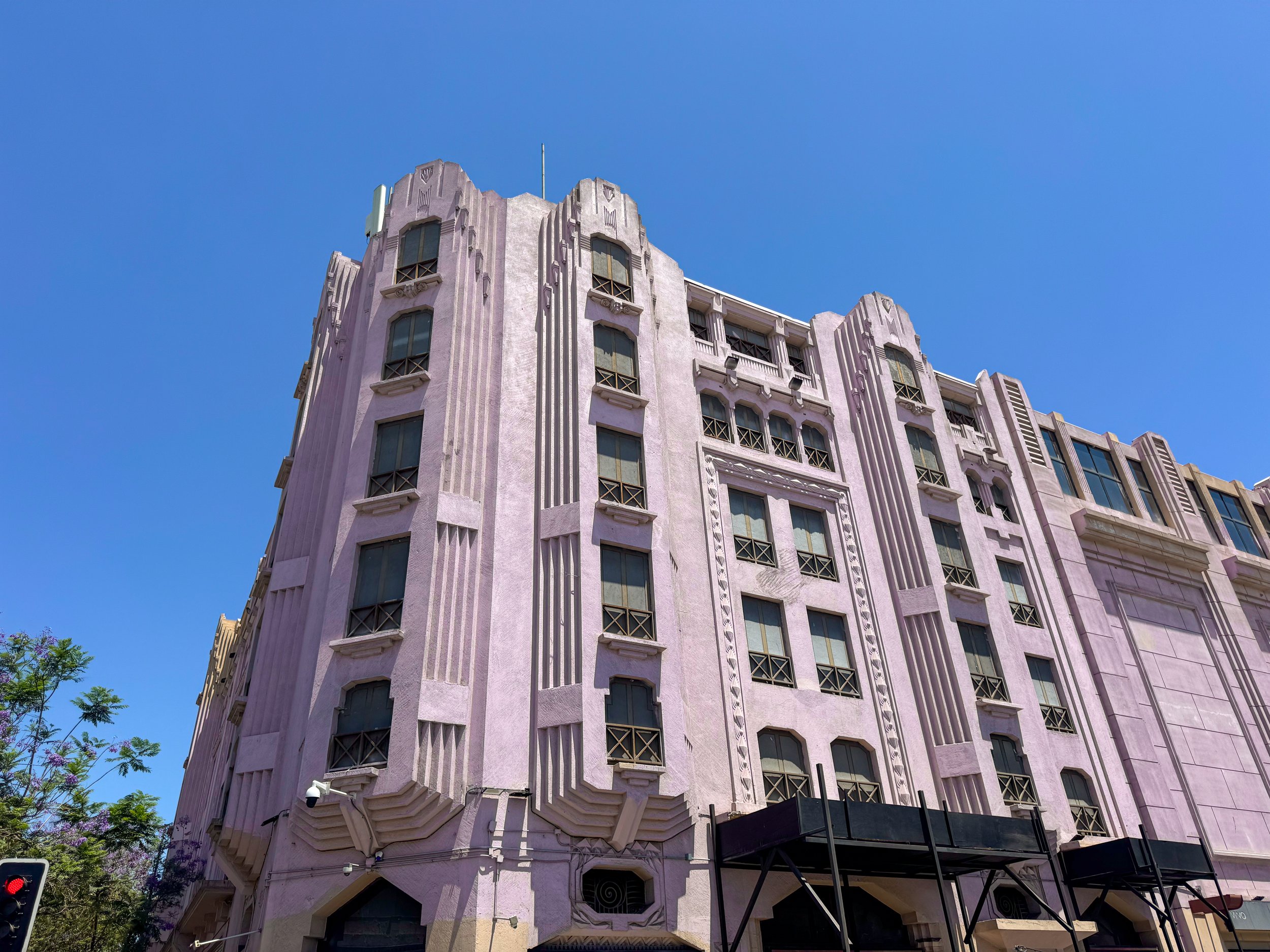
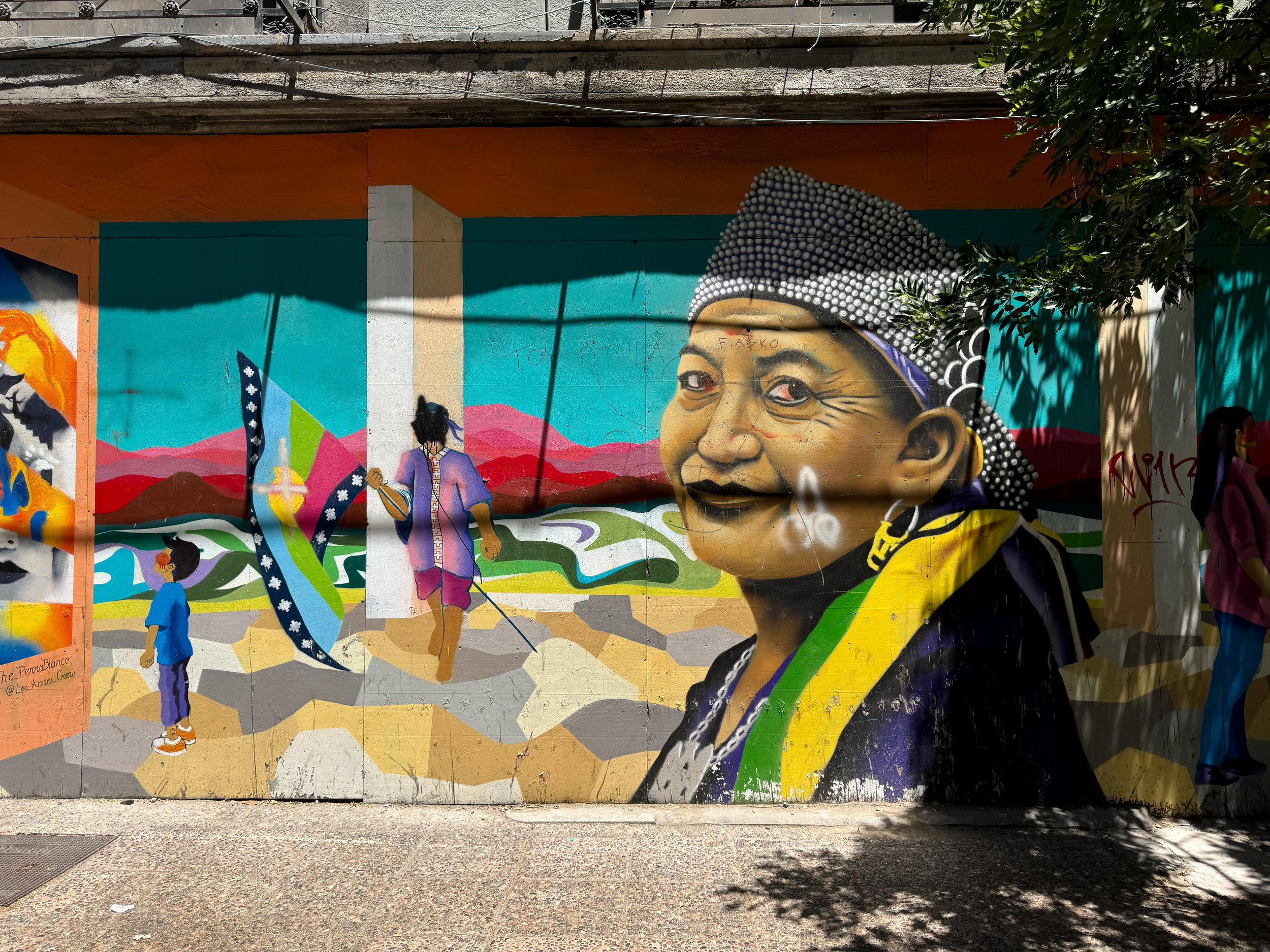
City Parks
Jacaranda Trees. For one to two weeks during southern spring, the Jacaranda trees are in full bloom. These beautiful trees blossom with tiny bell shaped lavender colored flowers visible around the city streets and from the lookouts. We were lucky enough to see them across the city when we visited in late November.
Cerro Santa Lucia. A beautiful hilltop park in the middle of the city with panoramic views of Santiago and the Andes Mountains. We walked the winding cobblestone paths, gradually meandering upwards through the park. Along the way, we passed ornate tiled fountains, bronze statues and medieval style architecture with castle walls, towers, lookouts and canons. The green space is home to natural hexagonal basalt columns, flowering jacaranda trees, towering palms and even a single Socotra Dragon Tree native to an Arabian island in Yemen.
Parque Forestal Museo. A verdant treelined city park with small meadows and walkways. It’s a retreat for locals on the weekend with couples lounging in the grass, pet owners playing fetch with their dogs and cyclists riding down the dirt pathways.
Parque Metropolitano de Santiago. A mountainous park in the middle of Santiago with winding walkways and bicycle paths, picnic areas, scenic lookouts, a zoo, a botanical garden and Japanese garden.
Cerro San Cristobal. A mountaintop lookout in the middle of the Parque Metropolitano de Santiago. It has beautiful views of the city, small cafes and a religious atmosphere with an outdoor church and various Christian shrines.
Funicular & Teleferico. We rode the funicular up the mountain from the Bellavista neighborhood to reach the Cerro San Cristobal. From the lookout, we continued on the teleferico across the mountainous park with views of the landscape and surrounding city.
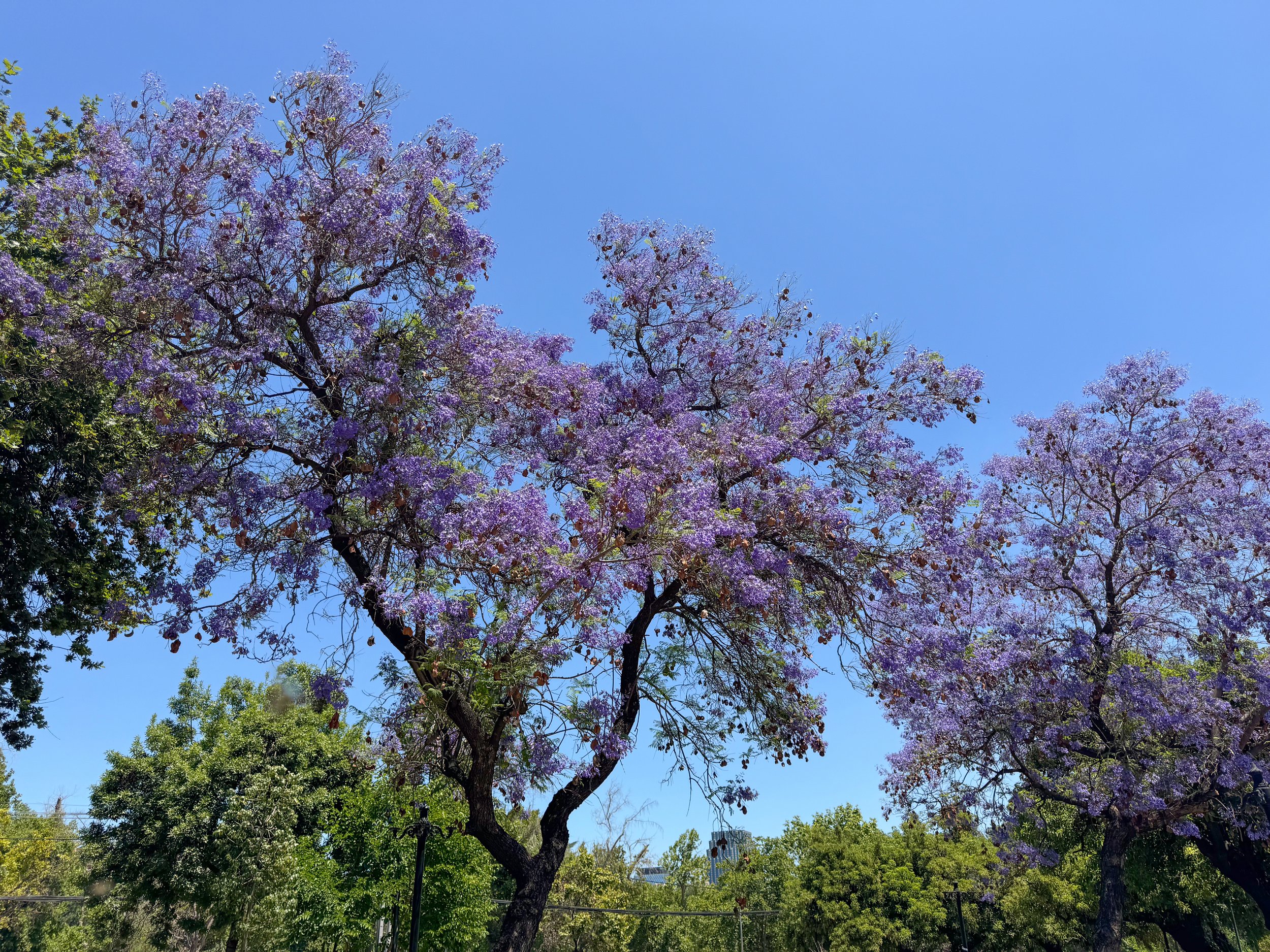
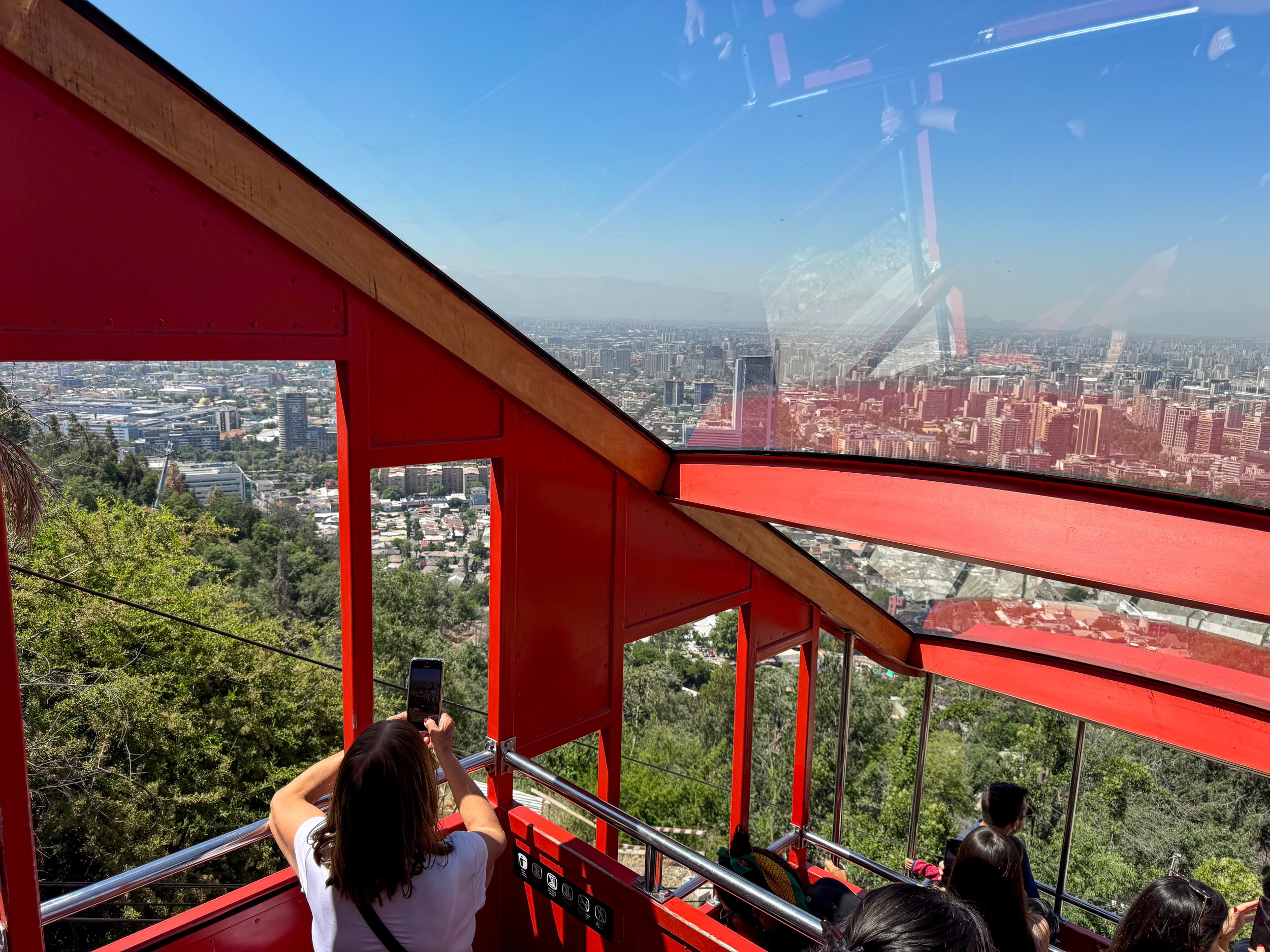
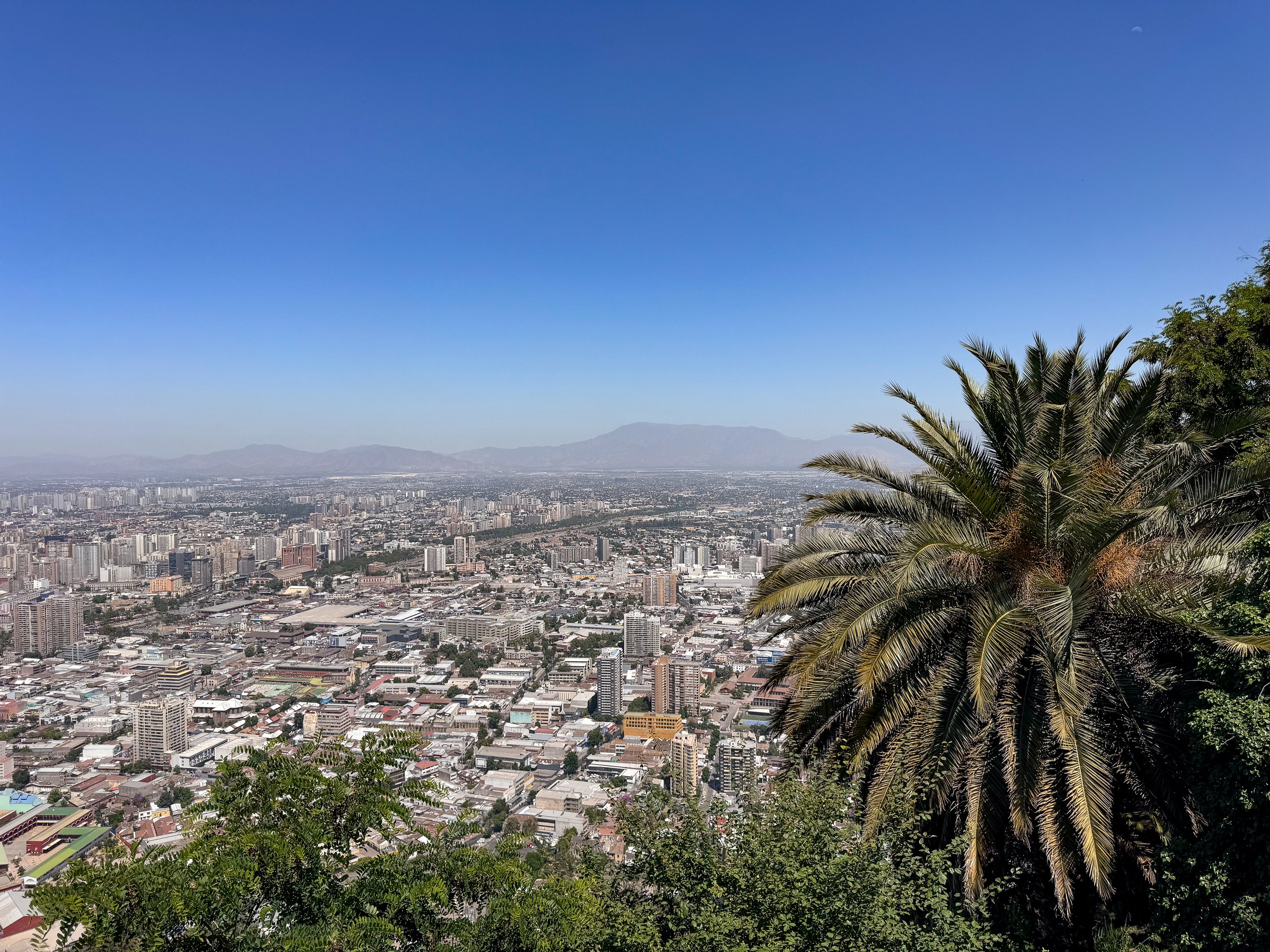
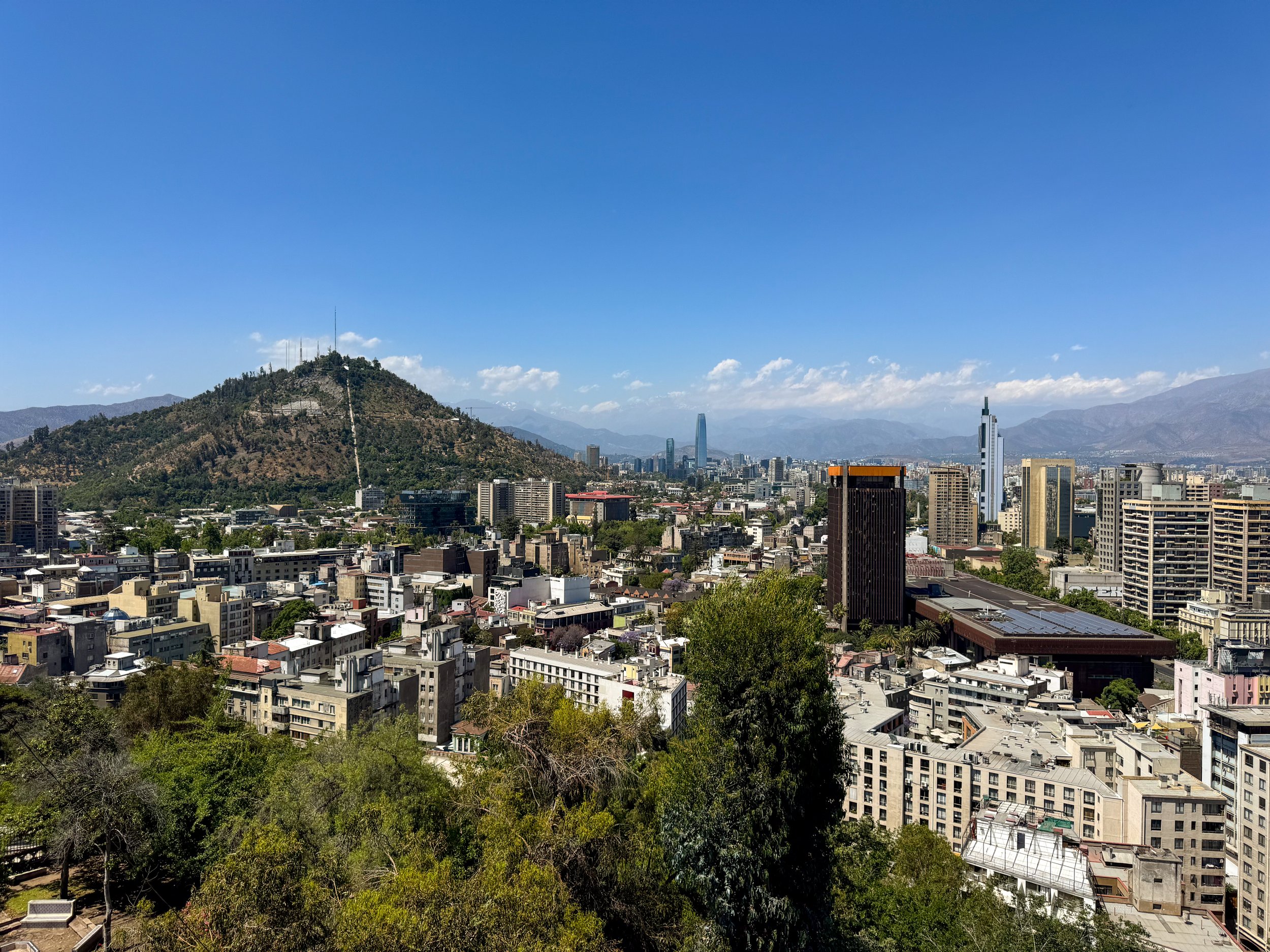
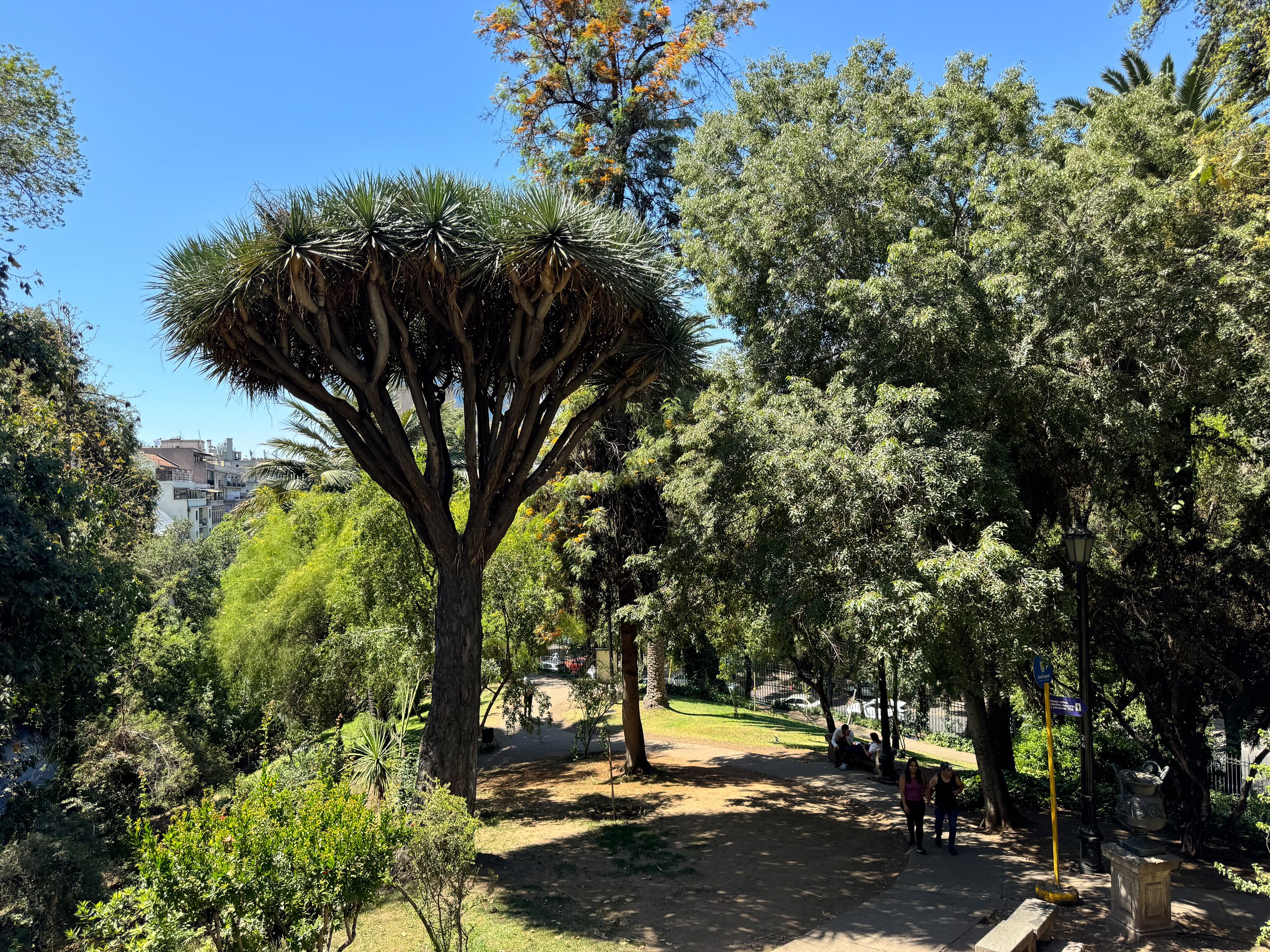
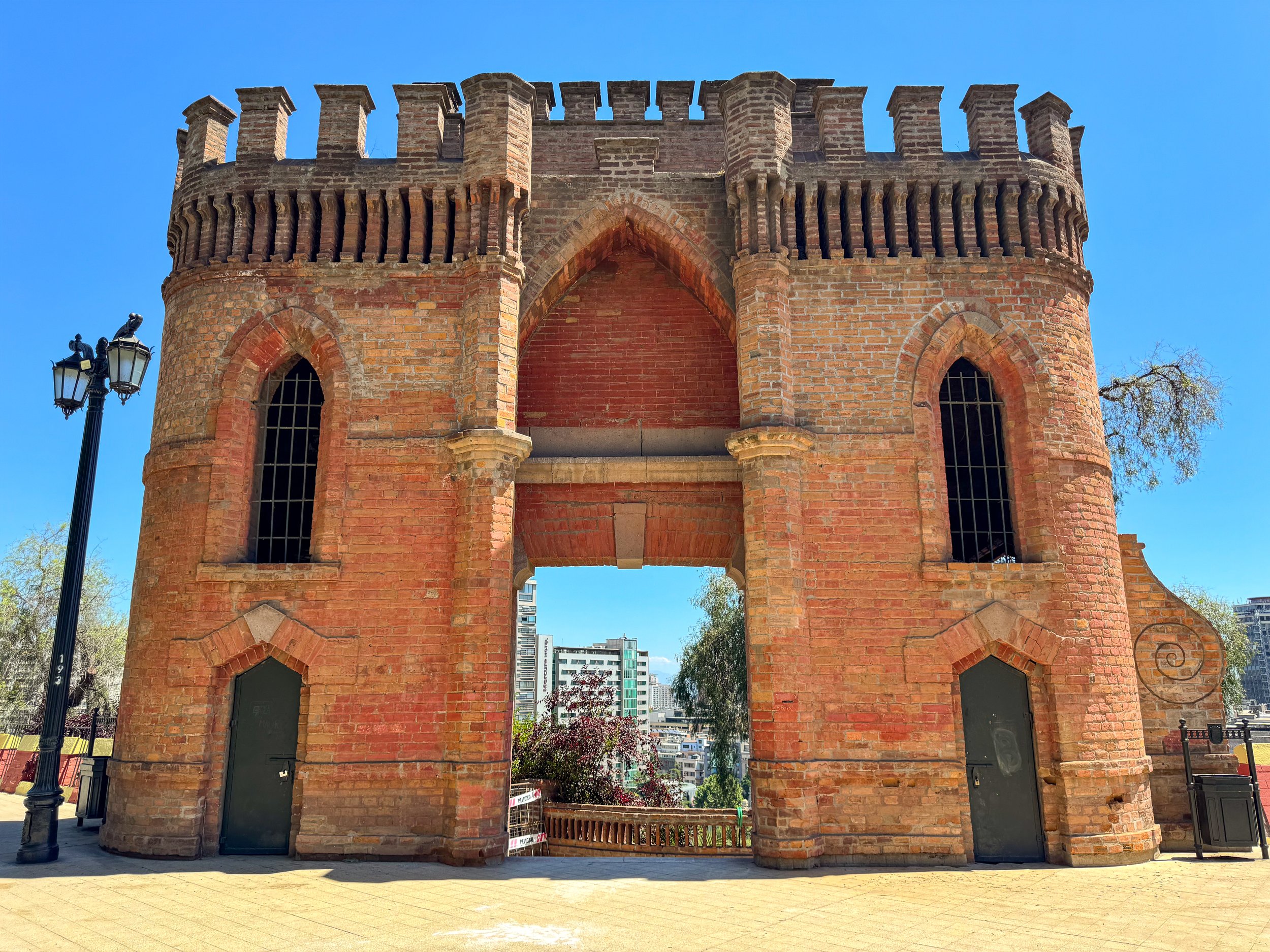
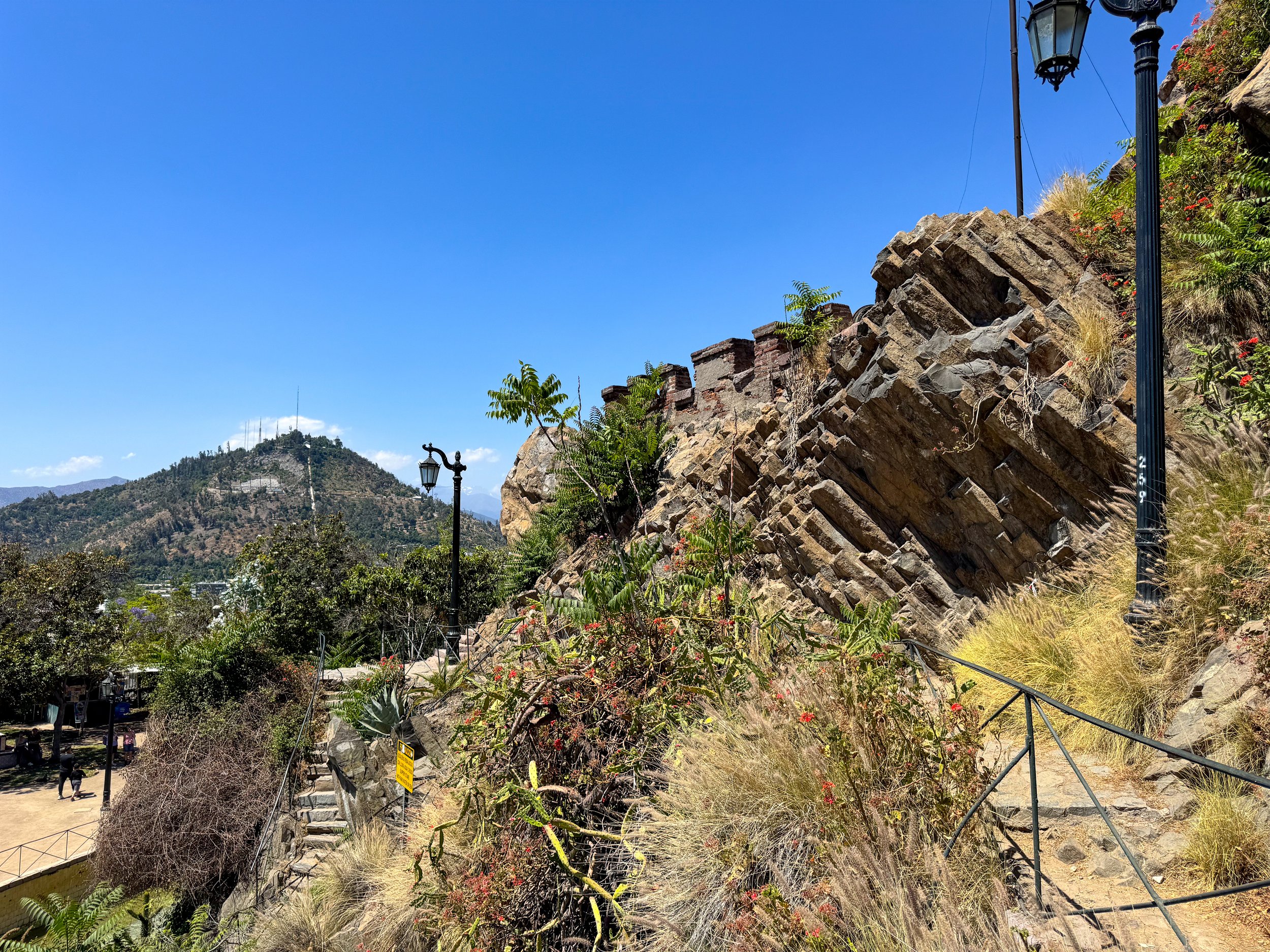
Sights
Sky Costanera. A modern glass tower and the tallest building in South America! Come here for a cocktail at its observatory while enjoying panoramic views of Santiago and the Andes Mountains. The 300 Bar serves inventive cocktails served in unique glasses, with bubbles of smoke and floral garnishing.
Plaza de Armas. A palm covered plaza and the city’s main square with several monumental buildings, street performers and vendors. It’s a scenic spot to sit down, people watch and enjoy the city.
Plaza de la Constitución. A stately square lined with Chilean flags surrounded by government buildings including the presidential palace, Palacio de La Moneda.
Markets
Mercado Central. A historic seafood market in an ornate wrought iron building with seafood restaurants and vendors selling an immense variety of the days fresh catch on large beds of ice. We enjoyed lunch at Donde Augusto, a longtime seafood restaurant in the middle of the market severing Chilean dishes like sautéed sea bass and Paila Marina. Afterwards, we shopped around for ingredients to prepare a traditional Chilean dish, Shrimp Pil Pil.
La Vega Central. A large produce market with vendors selling fruits, vegetables, potatoes, nuts and dry goods. The market is a great spot to shop for fresh and local ingredients at affordable prices. A cute and unexpected scene was the number of cats roaming around the market and even sleeping alongside bins of produce.
Good to know: The scene outside of the market is chaotic with shipments of produce being delivered, vendors selling miscellaneous goods on the sidewalks and unsavory characters stumbling around the area. Avoid the area after dark.
What to Eat
Chilean Sea Bass. The famed Chilean fish seen on menus at high end restaurants around the world. The tender white fish is often served grilled, sautéed in butter or as ceviche.
Empanadas. Served everywhere across Santiago, these large folded pockets of flaky dough are stuffed with any number of fillings from spiced vegetables, savory seafoods, herbed cheeses and meats are a staple of Chilean cuisine.
Caldillo de Congrio. A very traditional Chilean stew made from a seafood broth boiled with a large piece of conger eel served with its skin and bones still attached.
Pil Pil. A traditional style Chilean dish made from meat, seafood or mushrooms cooked in a spicy and savory sauce flavored with garlic and chili cacho de cabra. It’s typically served with papas doradas.
Paila Marina. A traditional Chilean seafood soup made from at least a dozen types of sea creatures including scallop, clam, crab, mussel, octopus, sea bass and shrimp cooked in herbs a savory broth with herbs and spices.
Alfajores. A Chilean dessert with a heavy layer of dulce de leche sandwiched between two cookies or crackers. Some bakeries and cafes even encase them in baked meringue.
Where to Eat & Drink
Viva La Vida. A Chilean restaurant in Bellavista with a menu of local and national dishes. Come here for the Chilean sea bass grilled with veggies and potatoes to the Caldillo de Congrio, a savory seafood and potato soup served with a large piece of eel.
Sanguchería Ciudad Vieja. A multi-level restaurant and cocktail bar in a historic corner building in Bellavista with sophisticated cocktails and late night bites.
El Jardin Cafétéria. A cafe in Bellavista with a garden themed interior and sidewalk patio. Come here for avocado toasts, egg dishes, pastries and coffee.
Marciel Art Cafe. A cozy cafe in Bellavista with an electric art gallery vibe. Come here for croissant sandwiches, pastries and coffee.
Chilean Wine
Bocanáriz. A wine bar with hundreds of Chilean wines served by tasting flights, the glass or full bottle. Short on time in Santiago, we came here to try Chilean wines instead of going on a vineyard tours. We ordered a flight of the “Signature Wines” including a pinot noir, garnacha and merlot. Our second flight, “Carmenere, National Emblem” included 3 of the country’s beloved carmenere wines. We also ordered a tasting of a brut rose and merlot a-la-carte.
Santiago Wine Club. A wine shop in the Lastarria neighborhood specializing in Chilean wines. We came here after our tastings at Bocanáriz and bought two bottles of our favorites, a cabernet franc from the Valle do Lolol and a carmenere from the Calle del Maule.
Where to Stay
We stayed at a studio in the middle of the Bellavistsa neighborhood with views of the Andes Mountains, nearby restaurants, bars and several of the sights we saw. When we return to Santiago, we will definitely be booking here again.
For Next Time…
We have a lot to see the next time that we return to Santiago! We plan to return for at least two weeks to explore more of the city and region.
Visit the Vineyards. Having got a taste for Chilean wine at the source, we plan to return and visit some of the wine producing regions like the Maipo Valley and Casablanca Valley.
Hike the Andes. There are several nearby hikes on the outskirts of the city with views of Santiago and the Andes Mountains. In addition, we’d like to venture further into the Andes to see the snow covered mountains, fresh water lagoons and small alpine style towns.
See the Museums. The weekend we visited were the gubernatorial elections and all of the museums we wanted to visit were closed. High on our list are Museo Histórico Nacional, Museo de la Memoria y los Derechos Humanos and Museo Nacional de Bellas Artes
Head to Coast. The Pacific shores are less than two hours from Santiago. We were recommended by locals and other travelers to spend time in the coastal cities of Valparaiso and Viña del Mar.
Rapa Nui National Park. Far from the coast of Chile in the middle of the South Pacific is the Polynesian island of Rapa Nui (aka Easter Island). We plant to visit and see the famed Moai stone faces.
Mendoza, Argentina
Mendoza is wine country! Here, hundreds of vineyards and countless rows of grape vines blanket the landscape beneath the backdrop of the Andes Mountains.
Wine Country
Mendoza is wine country! Here, hundreds of vineyards and countless rows of grape vines blanket the landscape beneath the backdrop of the Andes Mountains. The most notable wines of the many produced across the region are Malbecs and Cabernet Franc.
Wine Tour by Bicycle
There are multiple wine producing regions in Mendoza known for different varieties of grapes and wines. We visited the Maipu and Lujan de Cayo valleys on a self guided bike tours. Both valleys have a range of vineyards in close proximity to each other making it easy to visit multiple in one day. It’s also the most affordable way to visit the vineyards.
Maipu Bikes. A bike rental company in the center of the Maipu Valley with daily bike rentals, route suggestions, a map and vineyard discounts. They’re open from 10am-6pm with a free happy hour between 5-6pm. The cost is $10 ARS in cash only.
Baccus Wine Tours. A bike rental company in the Lujan de Cayo Valley with daily bike rentals, route suggestions and a map. They’re open from 10am-6pm daily. The cost is $15 ARS in cash only.
Good to Know
It’s best to start between 10-11am and plan out a route to maximize time.
If planning to visit any specific wineries, confirm hours and the need for a reservation before arriving.
Plan to visit anywhere from 2-5 vineyards depending on pace.
Order a meal for lunch or pairings throughout the day.
Bring water to stay hydrated!
Wear sunblock, Mendoza is technically a desert and the UV often reaches extreme levels.
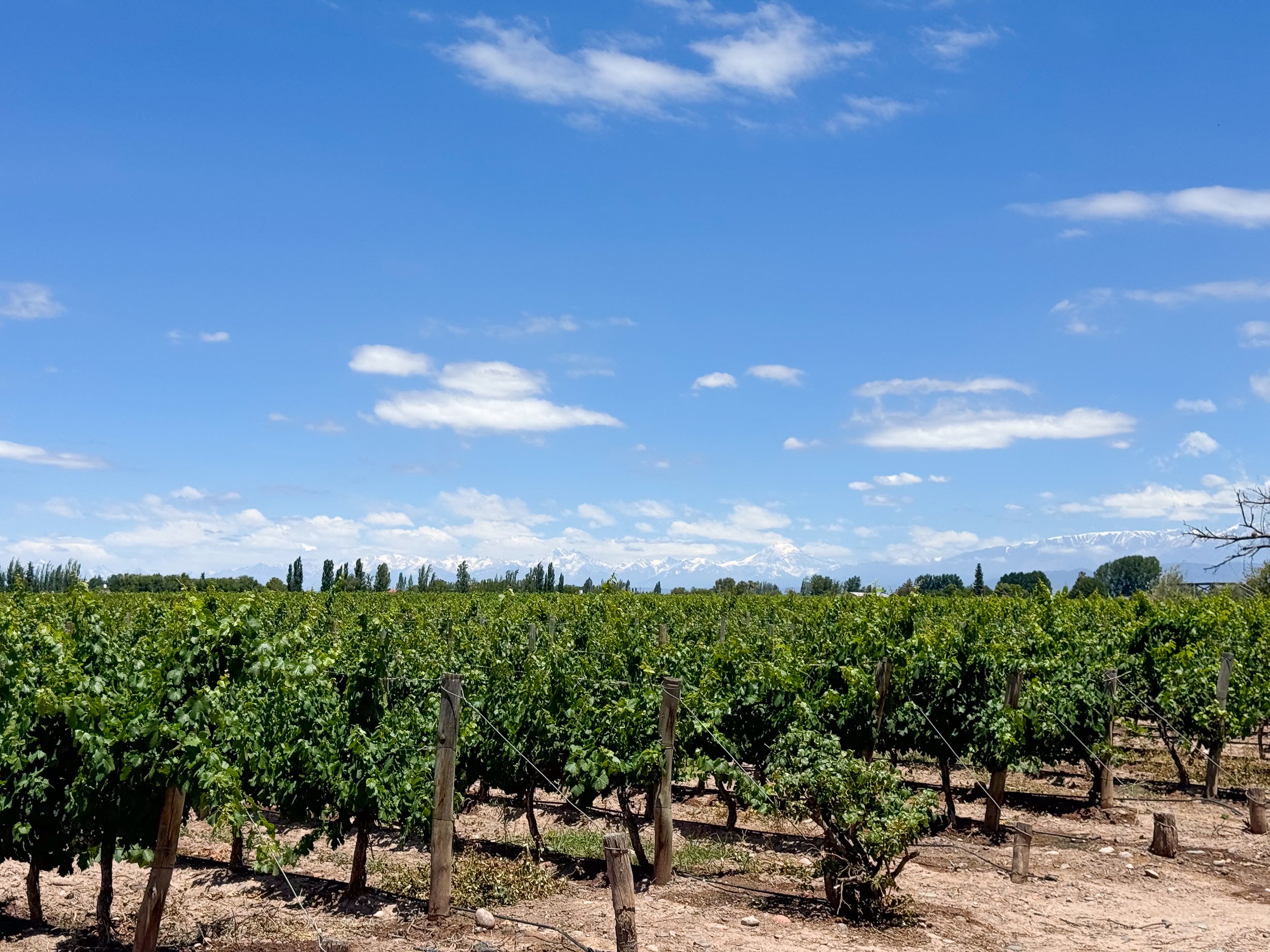
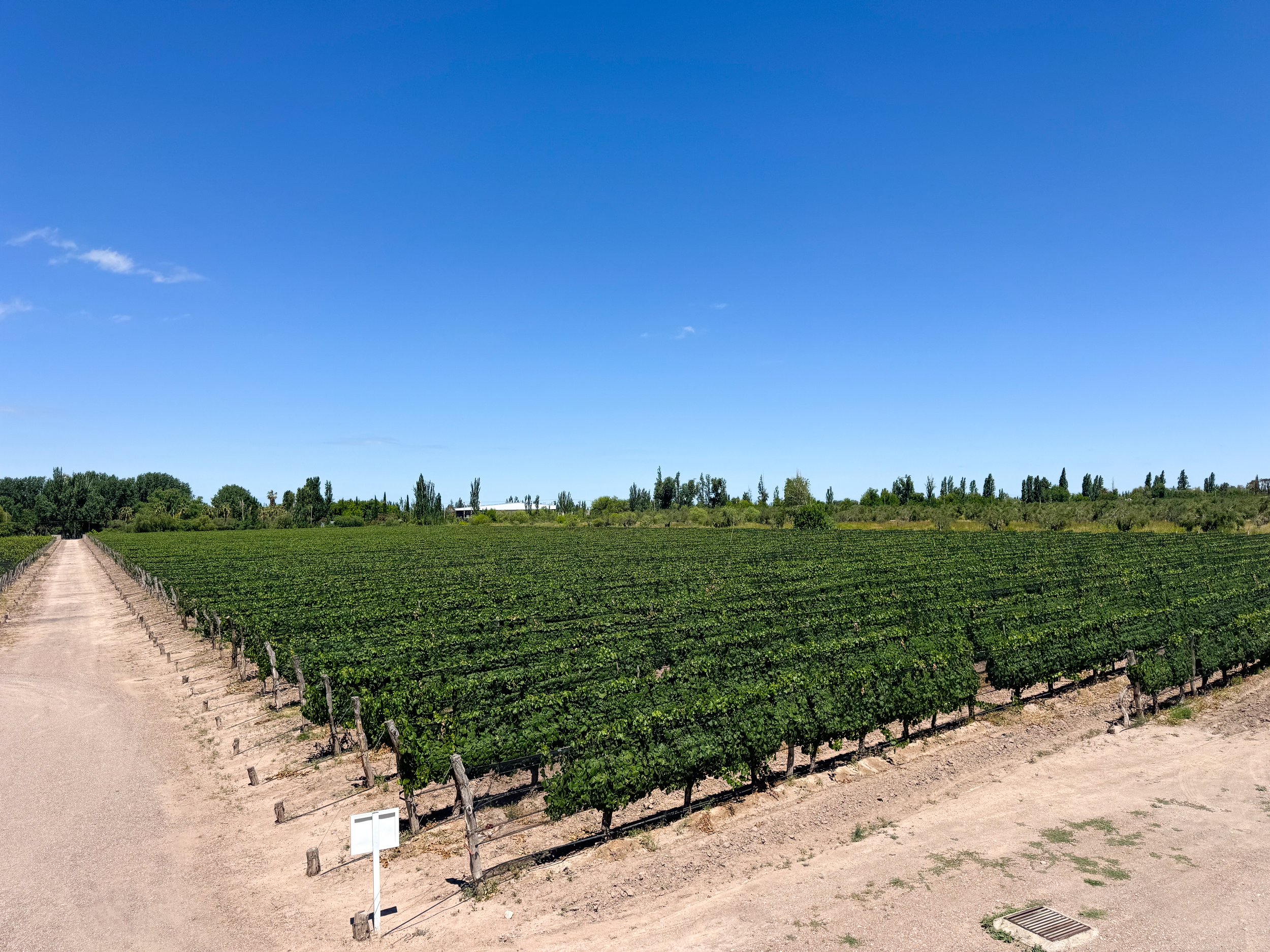
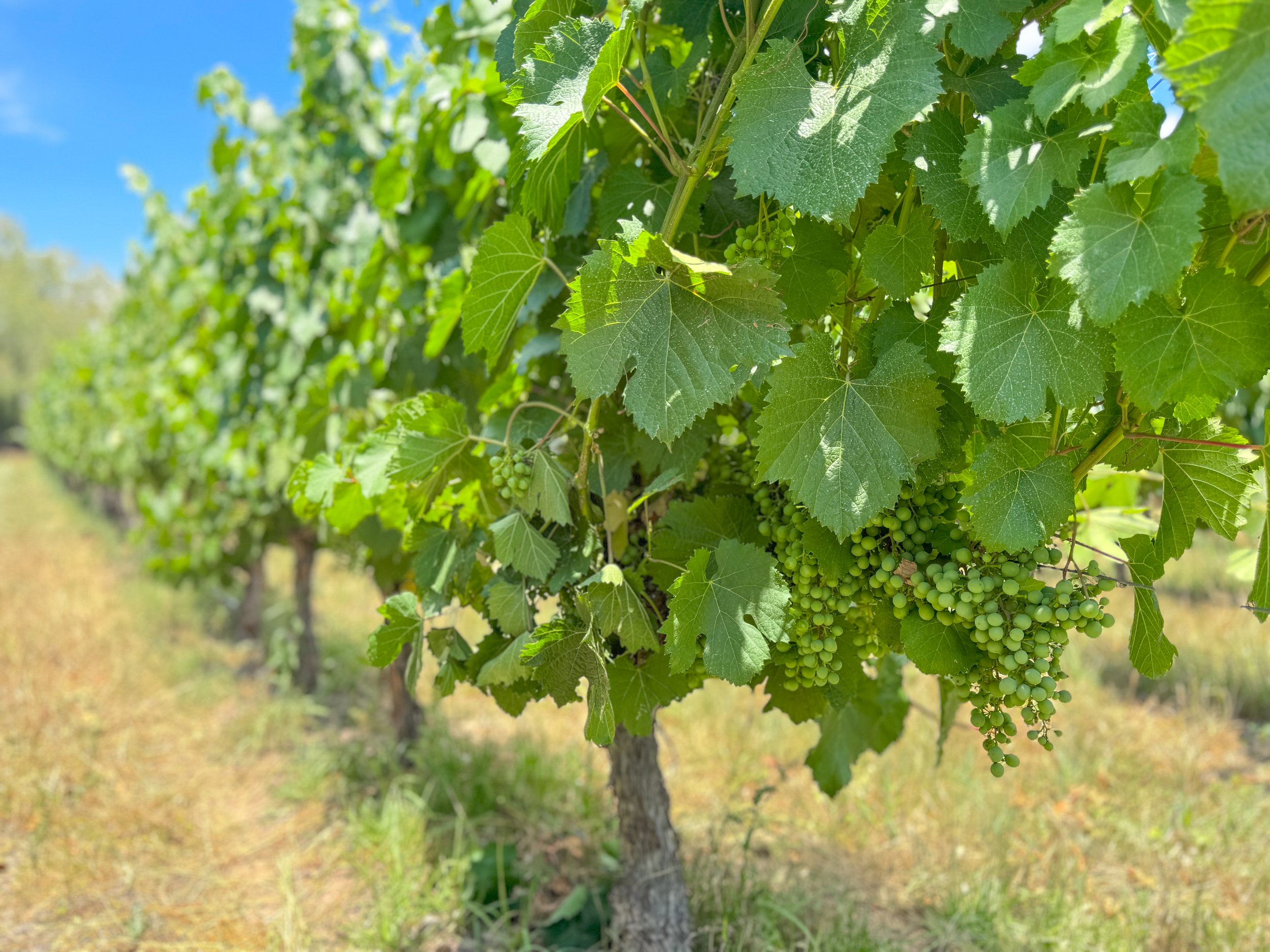
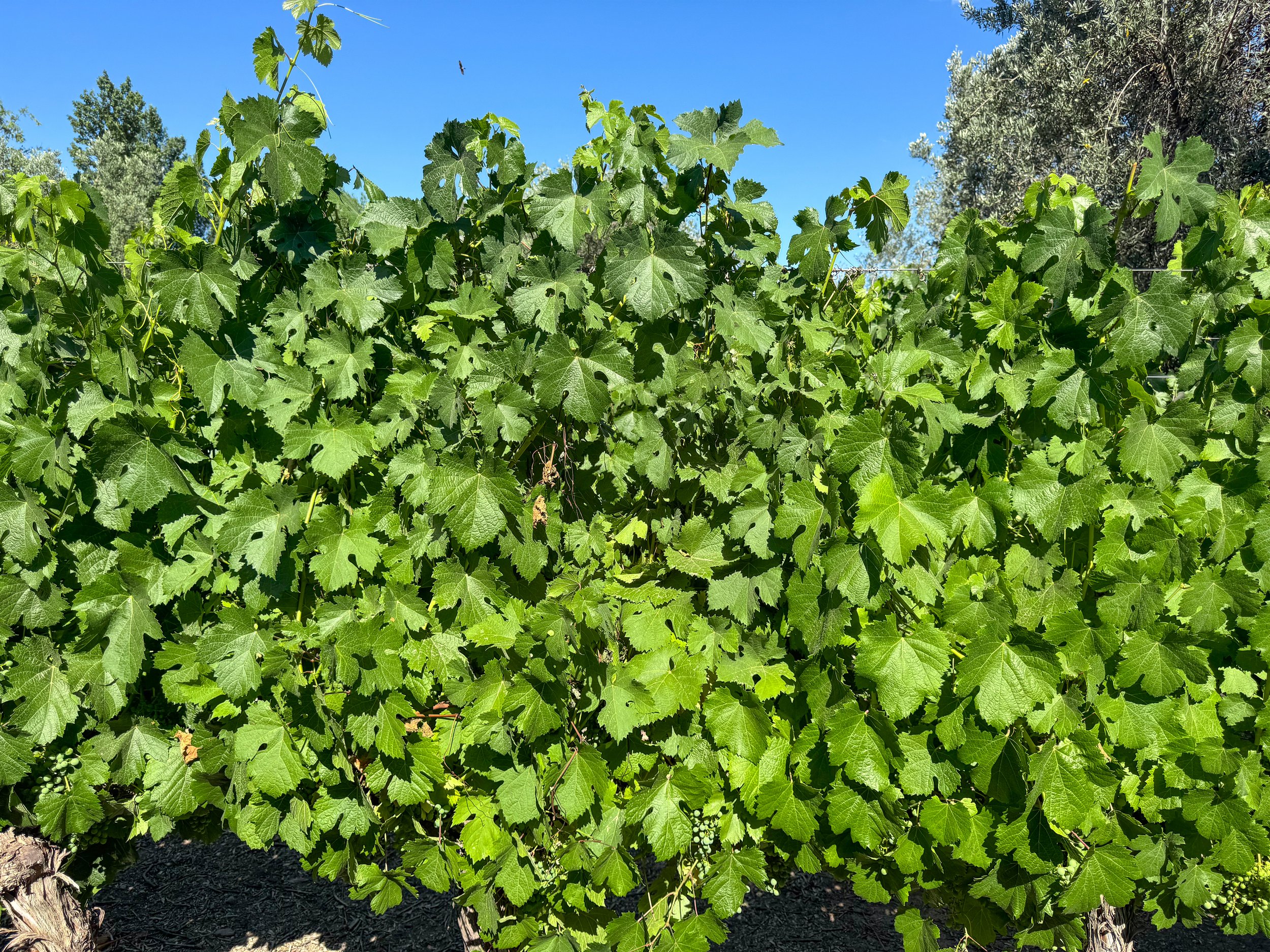
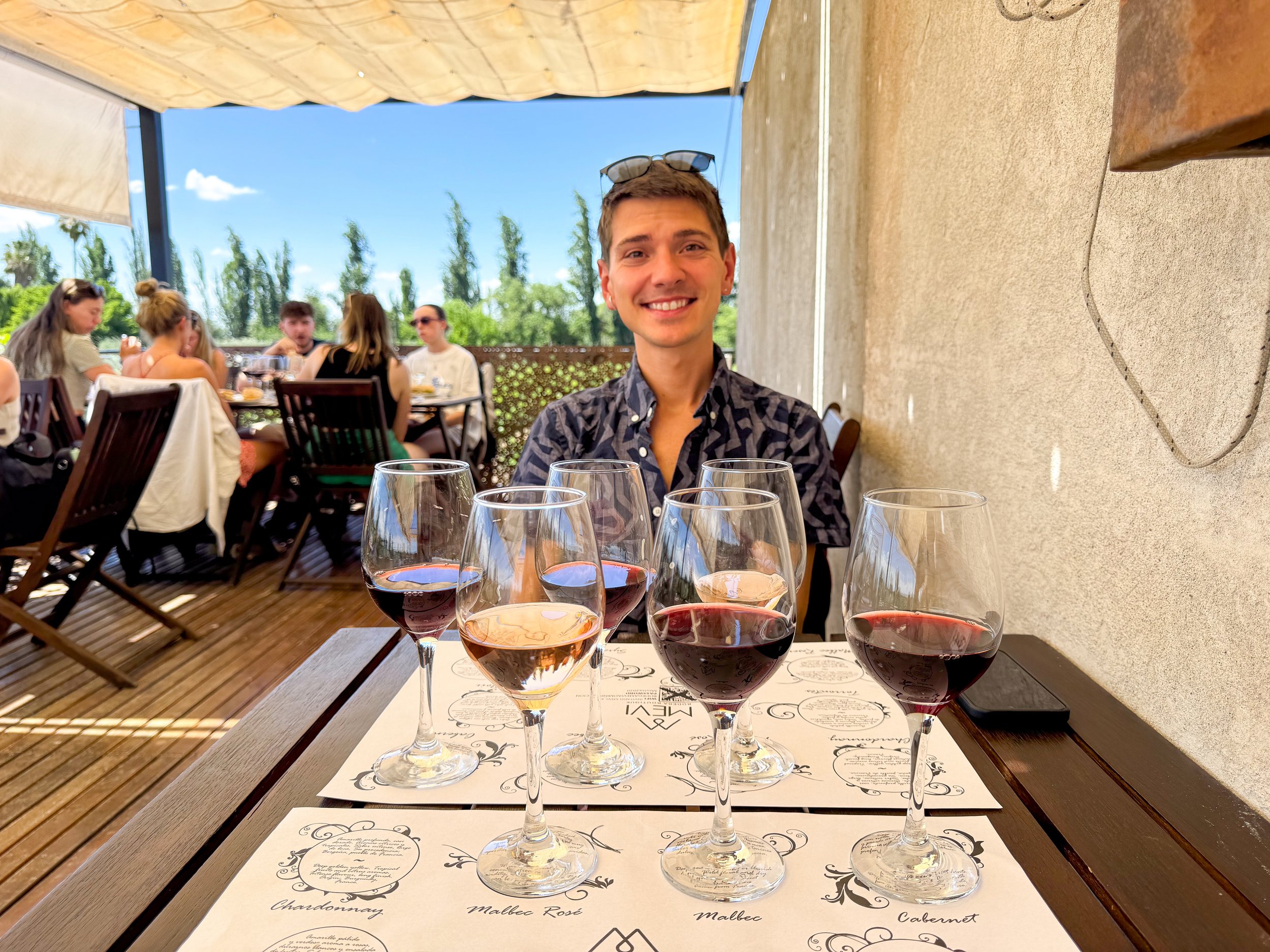
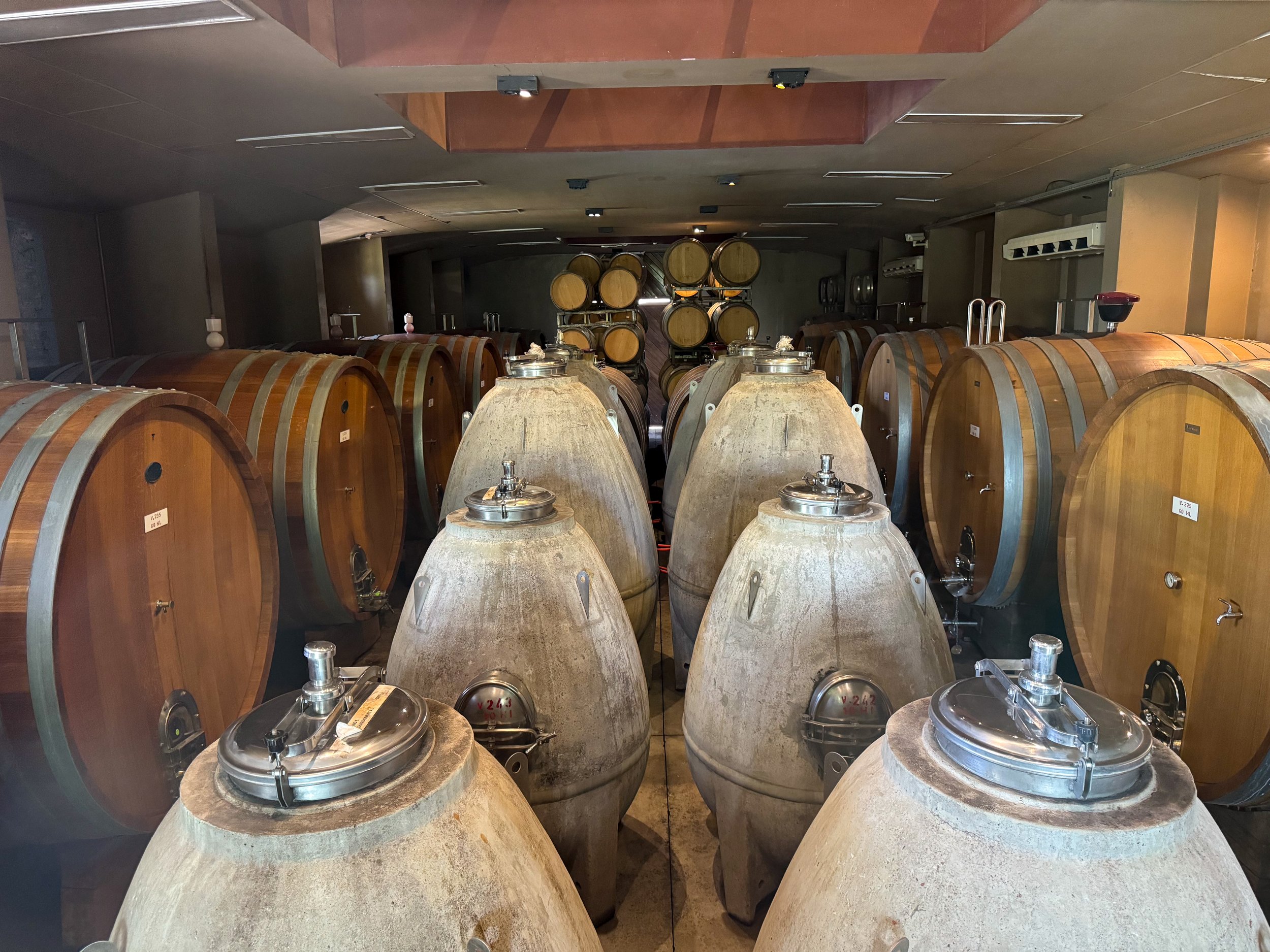
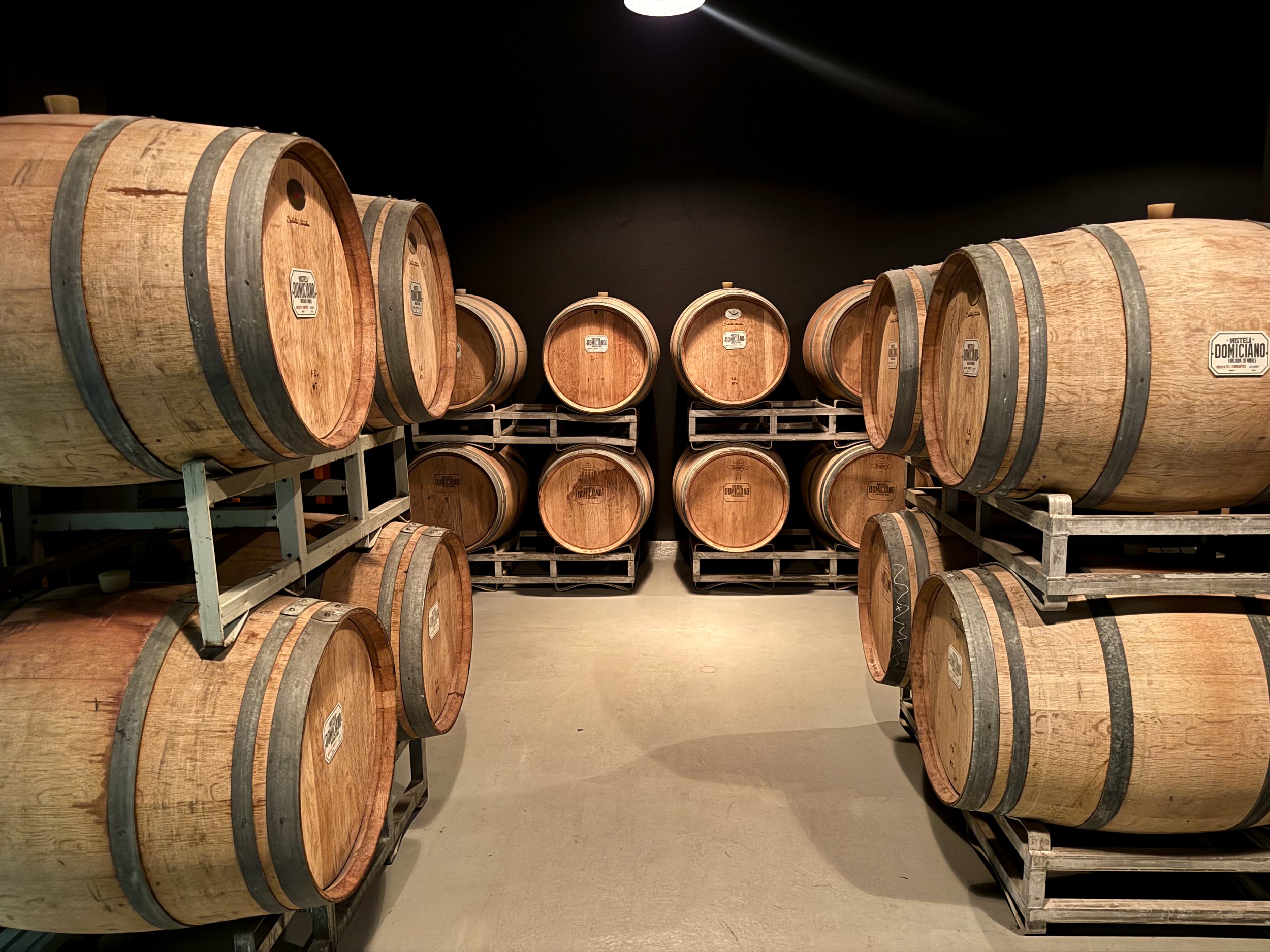
The Maipu Valley
A slightly industrial wine producing valley southeast of Mendoza with many large scale and boutique vineyards. Roadside bike paths follow the main road and branch off onto dirt roads leading to most vineyards. We visited 4 vineyards and an olive oil store during our tour.
Bodega Trapiche. A grand and historic vineyard with tours, tastings and opportunities to learn about the winemaking process. Our tour started with a stroll through the vineyard with a glass on small batch white wine only served onsite. We transited to a Malbec as we entered a warehouse with massive concrete tanks used to store thousands of liters of wine. The next building housed aerobatic oak barrels and concrete eggs of aging wine. We ended our tour in their tasting room with views of the andes, sampling two more Malbecs, both grand reserves. The vineyard is bike friendly, it’s pricer to visit and reservations are required.
Entre Olivos. A small shop with tastings of locally produced olive oils, olive pates and wine. We stopped here in route to the next vineyard and bought a bottle of oil to bake focaccia.
Viña el Cerno. A small vineyard with a tasting room in there processing warehouse. We didn’t learn much about the vineyard or their wines but got to sample three different types, a sweet rosé, Cabernet Franc and Merlot. The vineyard is bike friendly and no reservations are needed.
Bodega MEVI. A vineyard with a restaurant and tasting room overlooking their rows of grapes vines, olive trees and the snow covered Andes. We didn’t learn much about the wines but enjoyed the view while drinking them. We sampled three types, a dry rosé, Cabernet Franc and Merlot. The vineyard is bike friendly and no reservations are needed.
Bodega Domiciano. A winery with a small show vineyard at their production facility. We toured the vineyard with rows of Sarah, Merlot and Cabernet grapes, getting to learn about the vines themselves. Inside their warehouse, we walked past large concrete tanks used to store thousands of liters of wine then to their cellar with oak barrels and bottles of aging reserves. Our tour ended in their tasting room where we sipped on a Sparking Brut, Malbec and Syrah. The vineyard is bike friendly, no reservations are needed however tours happen at set times throughout the day.
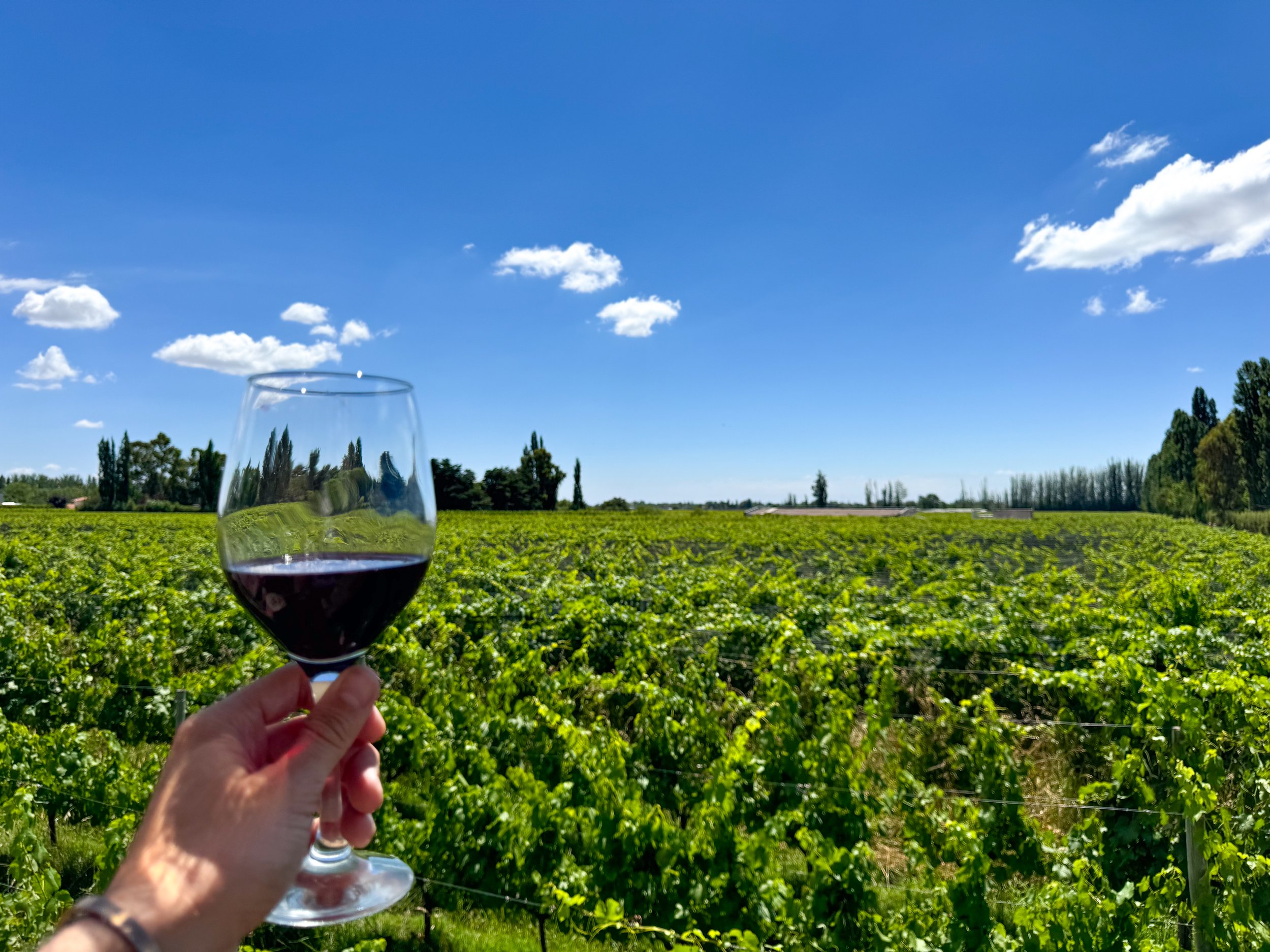
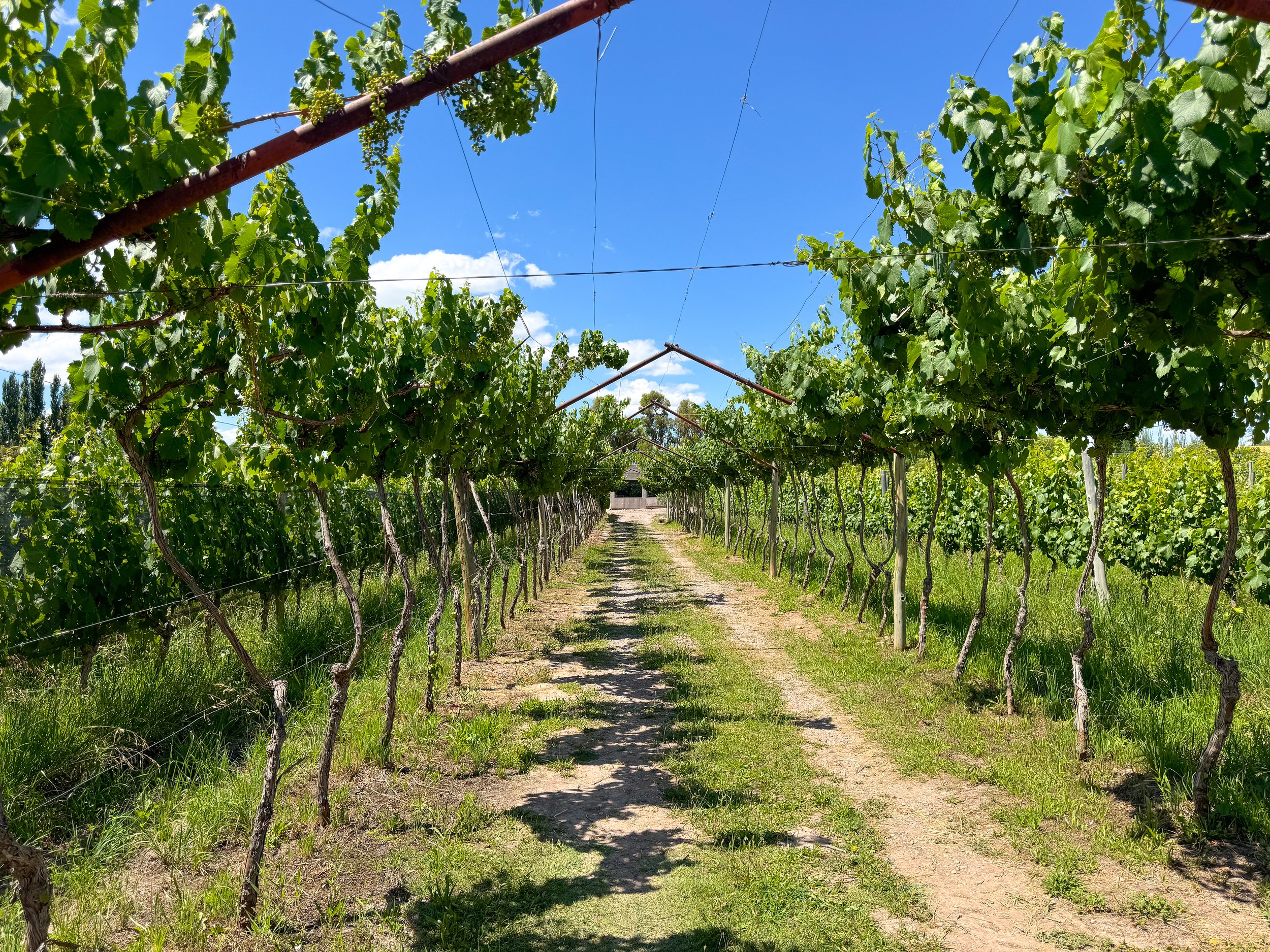
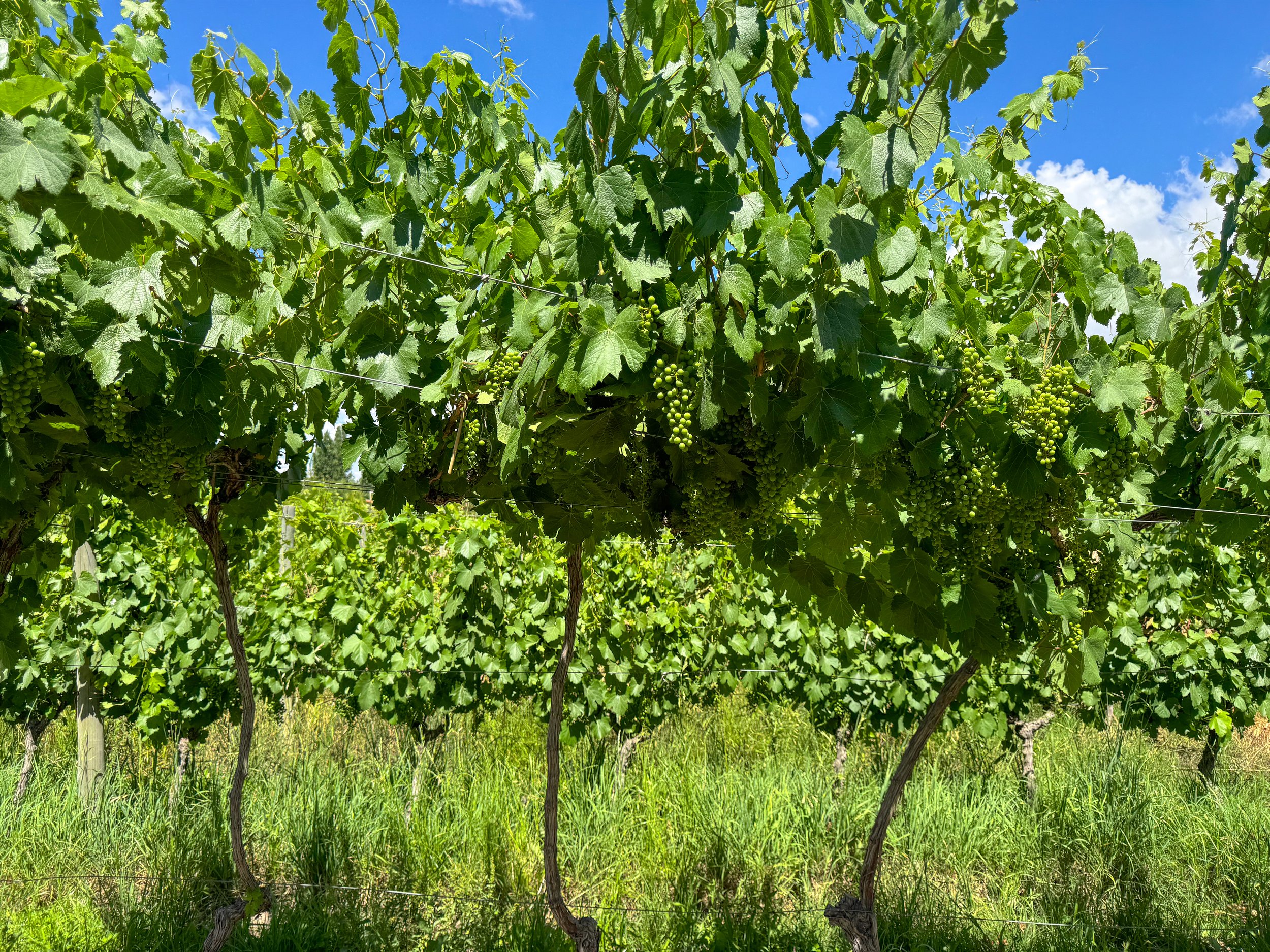
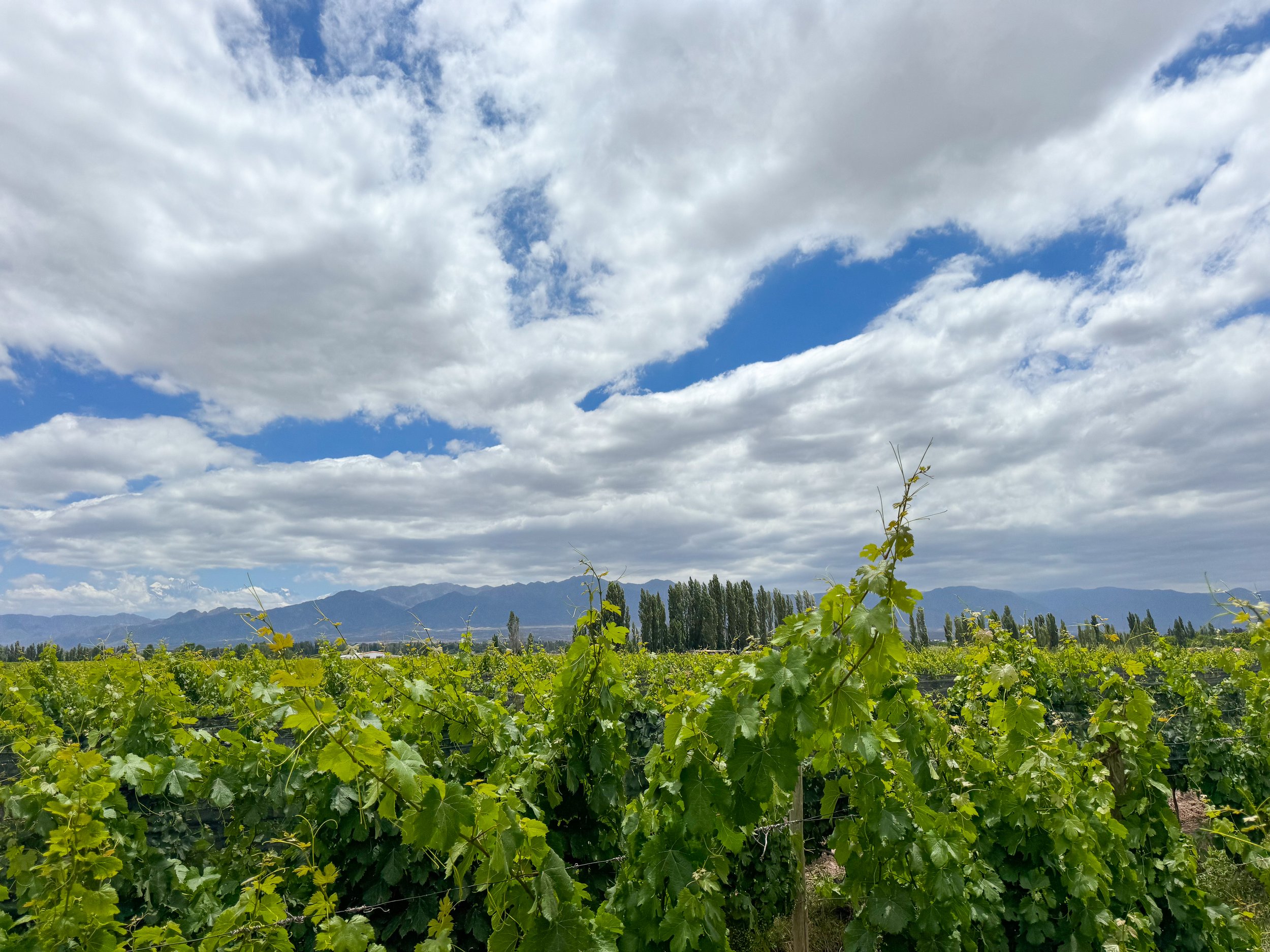
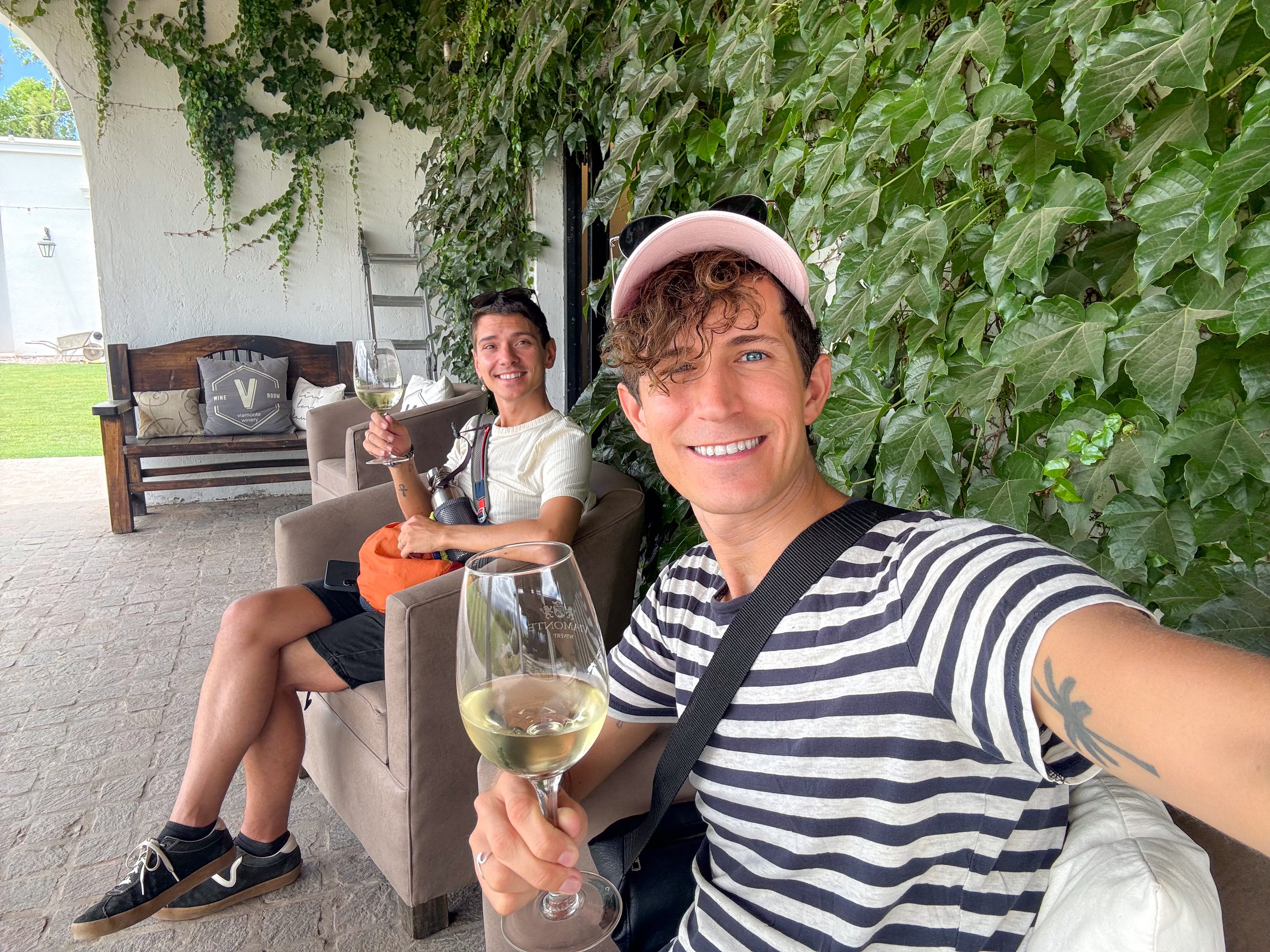

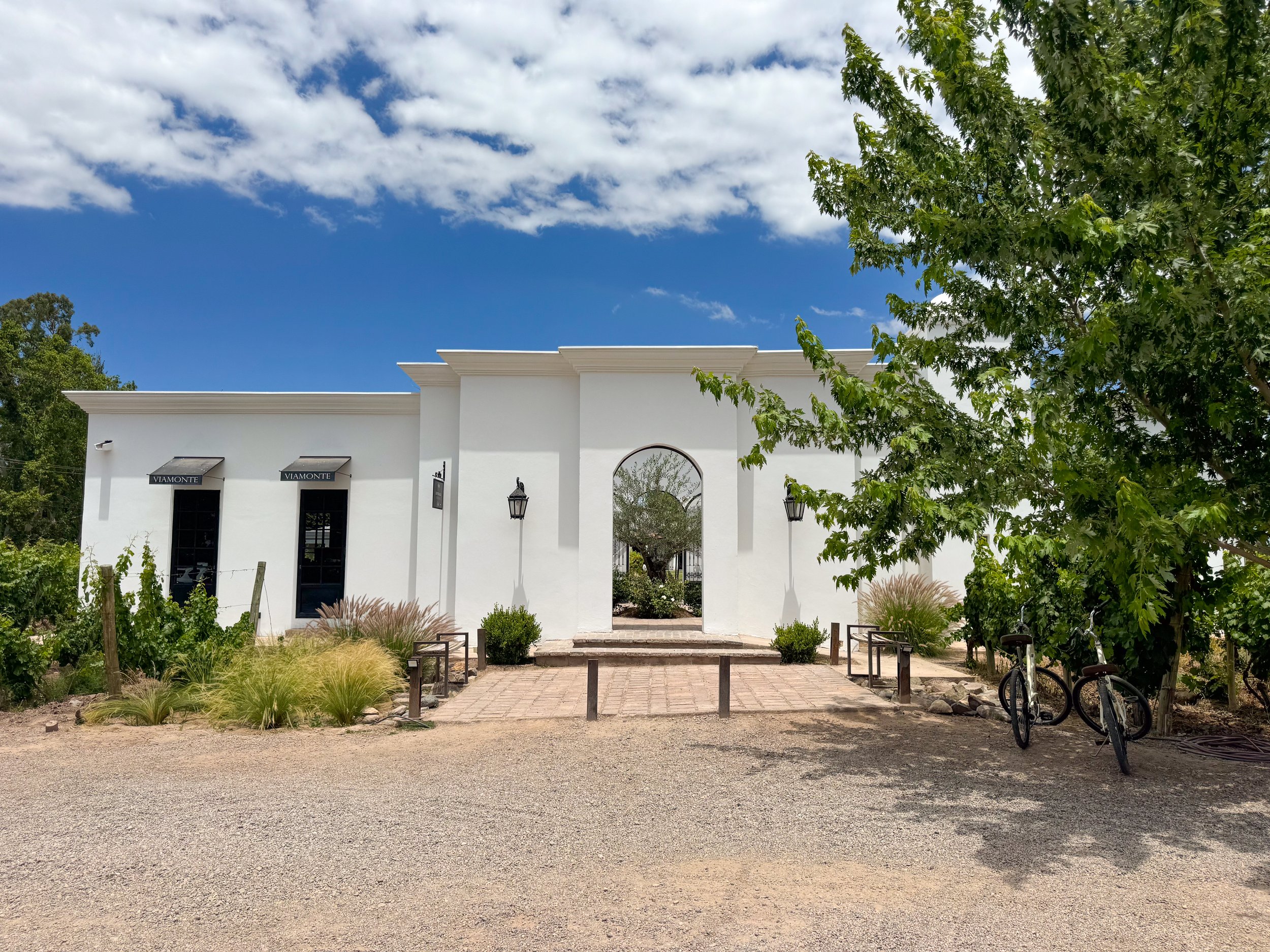
Lujan de Cuyo
A beautiful valley with grand vineyards, country homes and views of the Andes located south of Mendoza. It has defined and well maintained sidewalk style bike paths that lead directly to most vineyards. We had a lazy day, only visiting two vineyard while enjoying the scenery and wines.
Bodega Gieco. A rustic vineyard with a tasting room, provisions shop, bakery and range outdoor seating areas. We tasted three wines: Malbec, Cabernet Franc and Tannat. We enjoyed our first glass on their elevated deck overlooking the rows of grape vines in vineyard with a house baked vegan ciabatta sandwich. We sipped on the second two in their patios covered with fruiting apricot trees. The vineyard is bike friendly and no reservation is needed.
Bodega Viamonte. A very elegant vineyard with seemingly endless rows of grape vines and views of the snow covered Andes. We arrived early and ordered a glass of rosé paired with a chocolate moose pastry. The tour began with a glass of their house white, a walk through the vineyard and white brick processing facilities. We ended in their tasting room surrounded by oak barrels of aging wines. Our tasting included four Malbecs, two entry level, one reserve and grand reserve paired with a chocolate tart, tomato moose cracker and blue cheese. The vineyard is bike friendly and reservations are required.
City Winery
Bodega Las Toneles. A massive winery in the city with historic buildings housing giant concrete containers, steel tanks and stacked oak barrels of aging wine. We tasted a Merlot directly from a stainless steel tank and sampled glasses of Pinot Noir, Rosé, Sauvignon Blanc and two Malbecs. The most exciting part of the tour is the extravagant underground wine vault with painted mermaids swimming in tanks of wine. The winery has a pastel colored cafe, a Michelin stared restaurant and event venue.
Central Mendoza
The city center of Mendoza is a hub for cuisine and wine with restaurant lined streets, tree covered promenades, empanaderas, produce markets and daily happy hours.
Calle Arístides Villanueva. A tree covered street with many restaurants, bars, cafes and breweries popular with both locals and tourists, especially after 8pm. Come here to dine at one of the street patios or high-end restaurants.
Peatonal Sarmiento. A tree covered pedestrian street with cafes, wine shops, restaurants and shopping.
Mercado Central. A historic market with vendors selling wine, olives, bread, meats, cheese, seafood, empanadas, alfajores and produce.
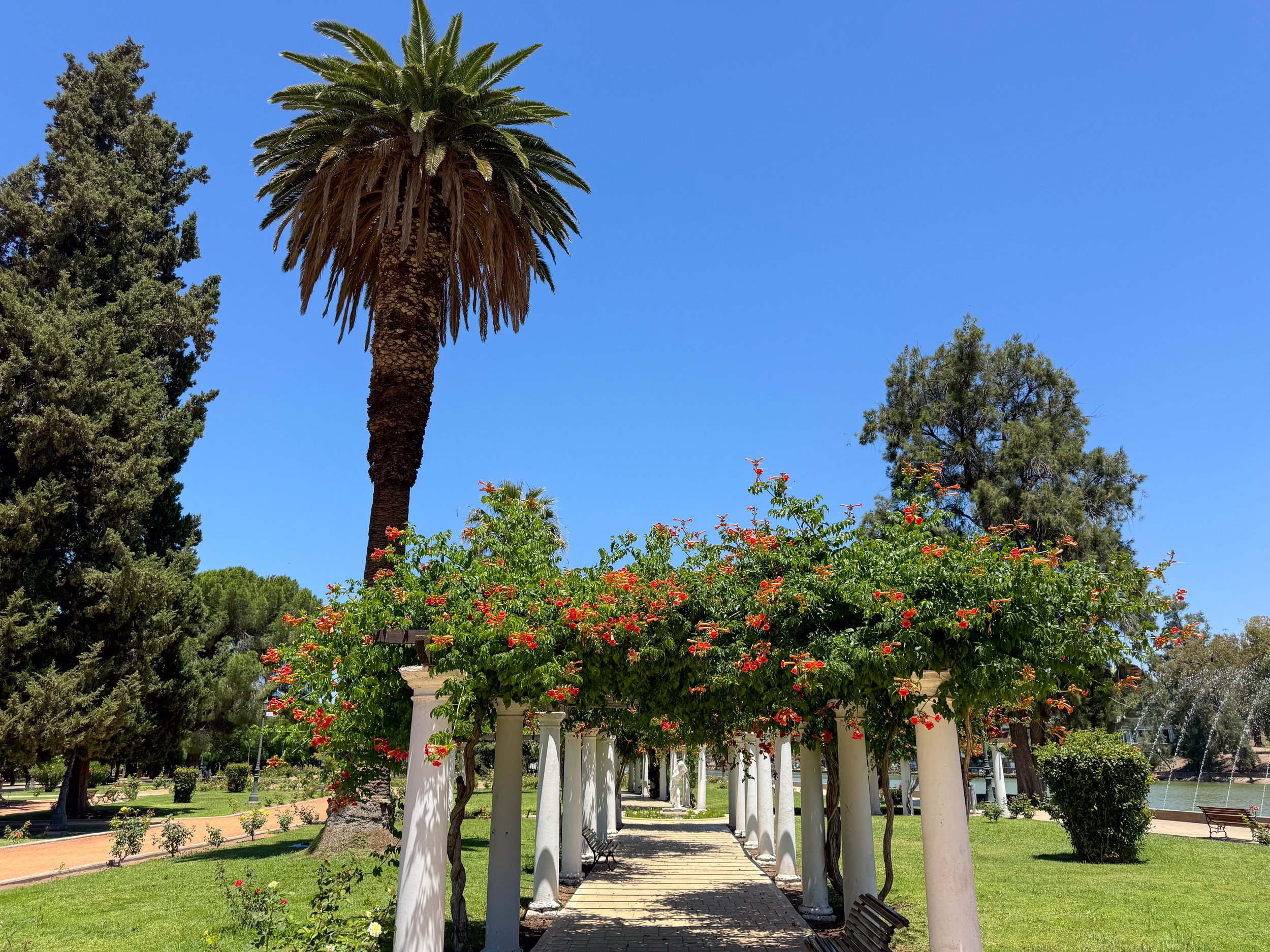
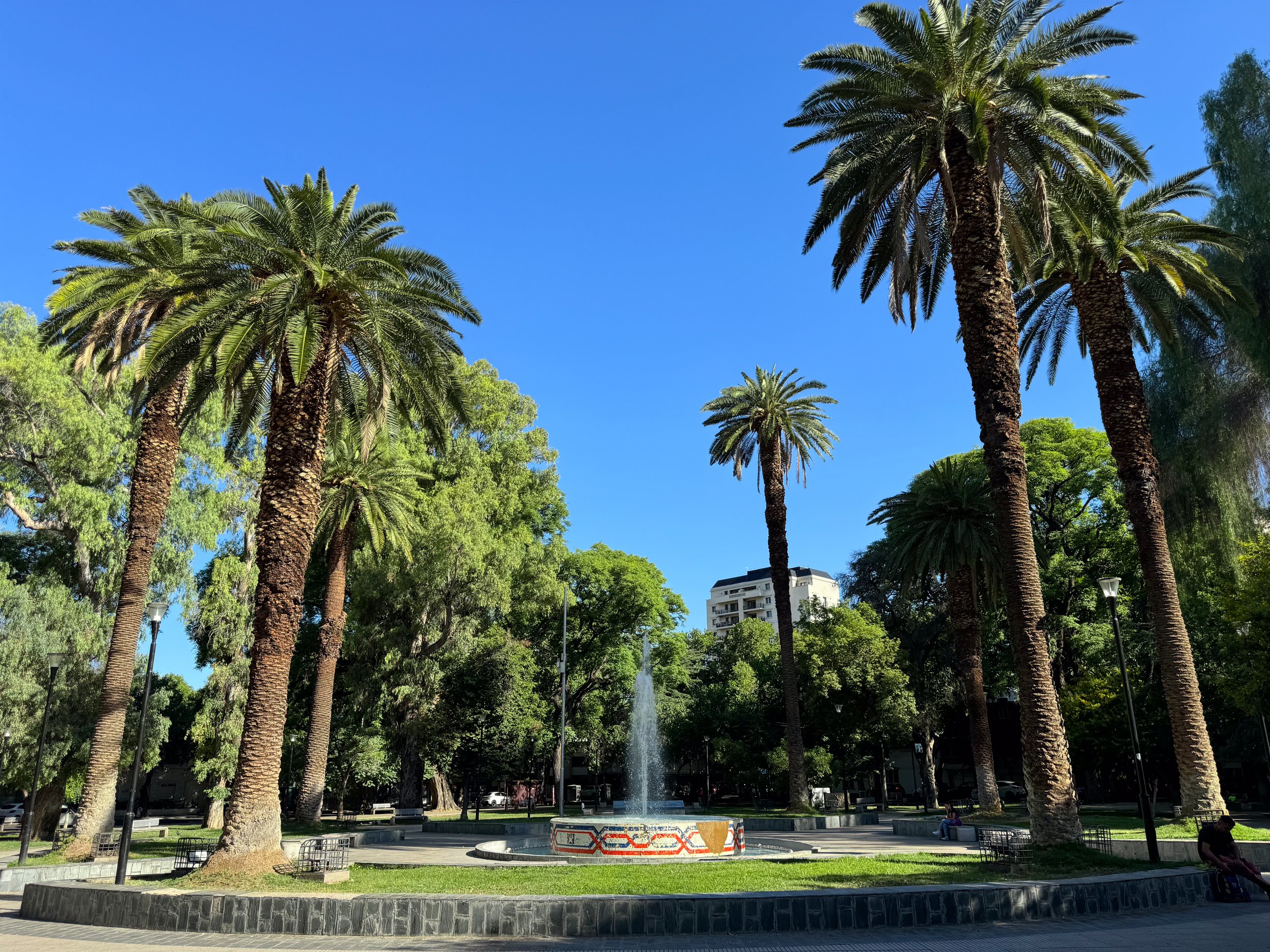
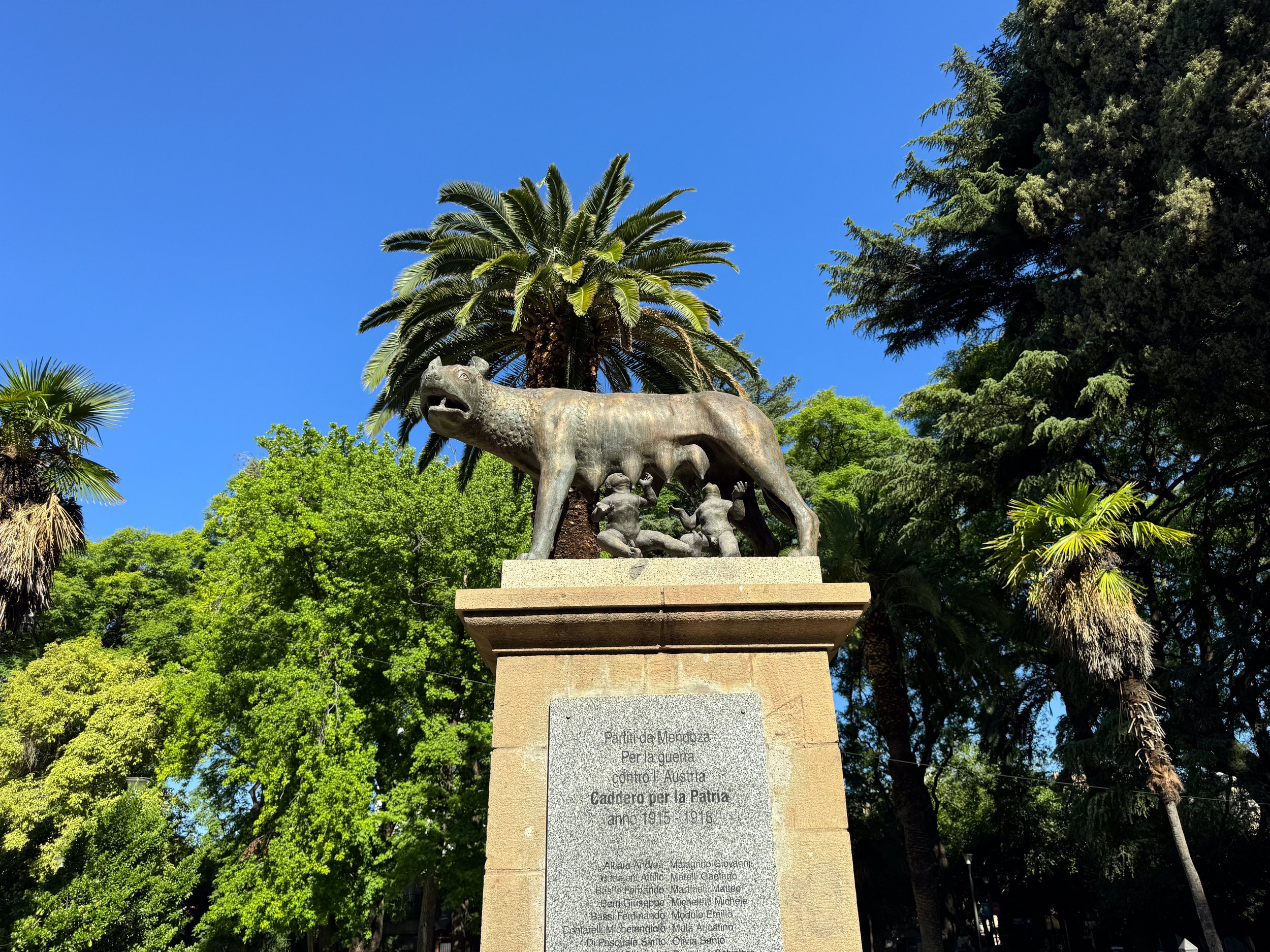
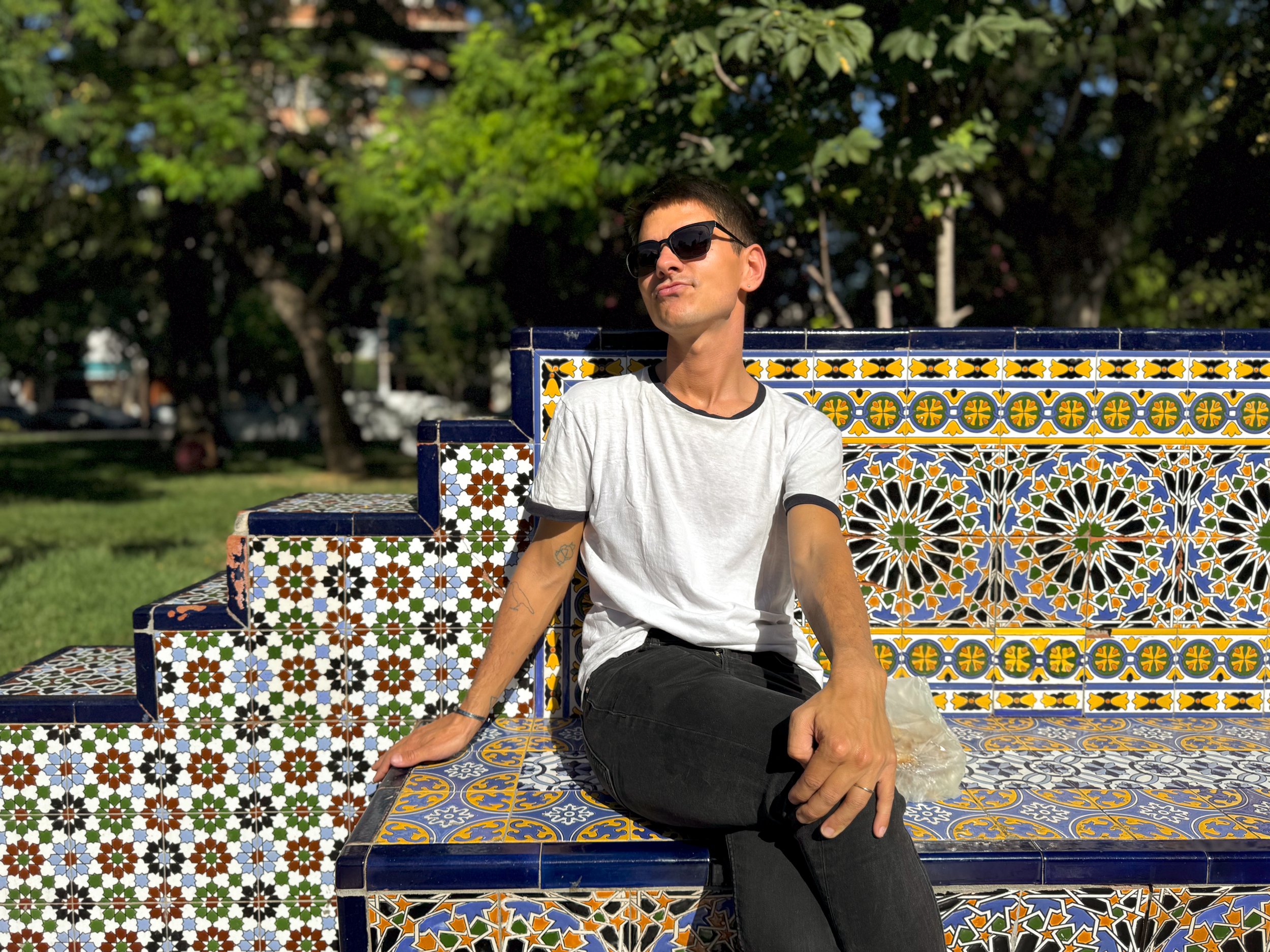
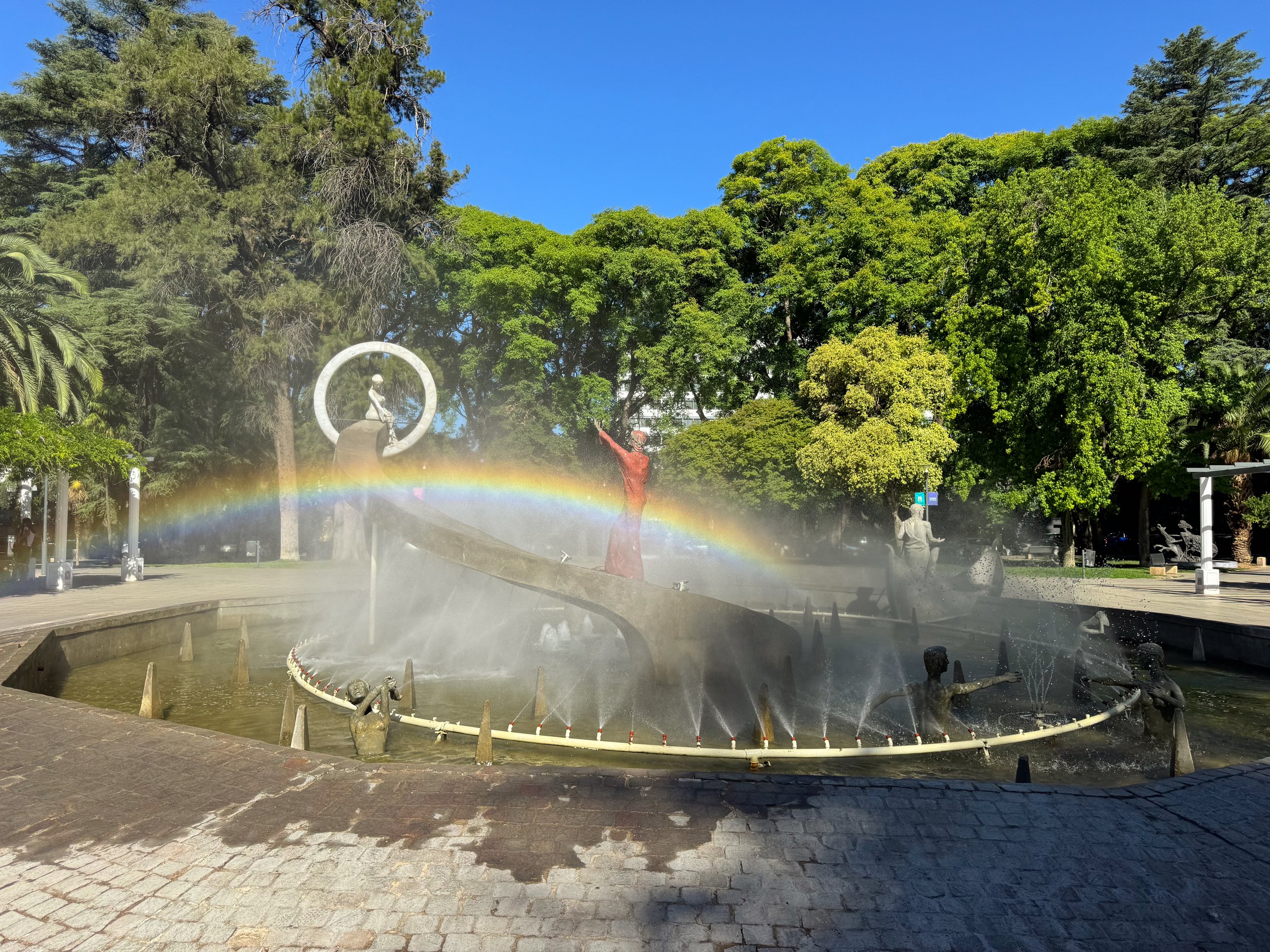
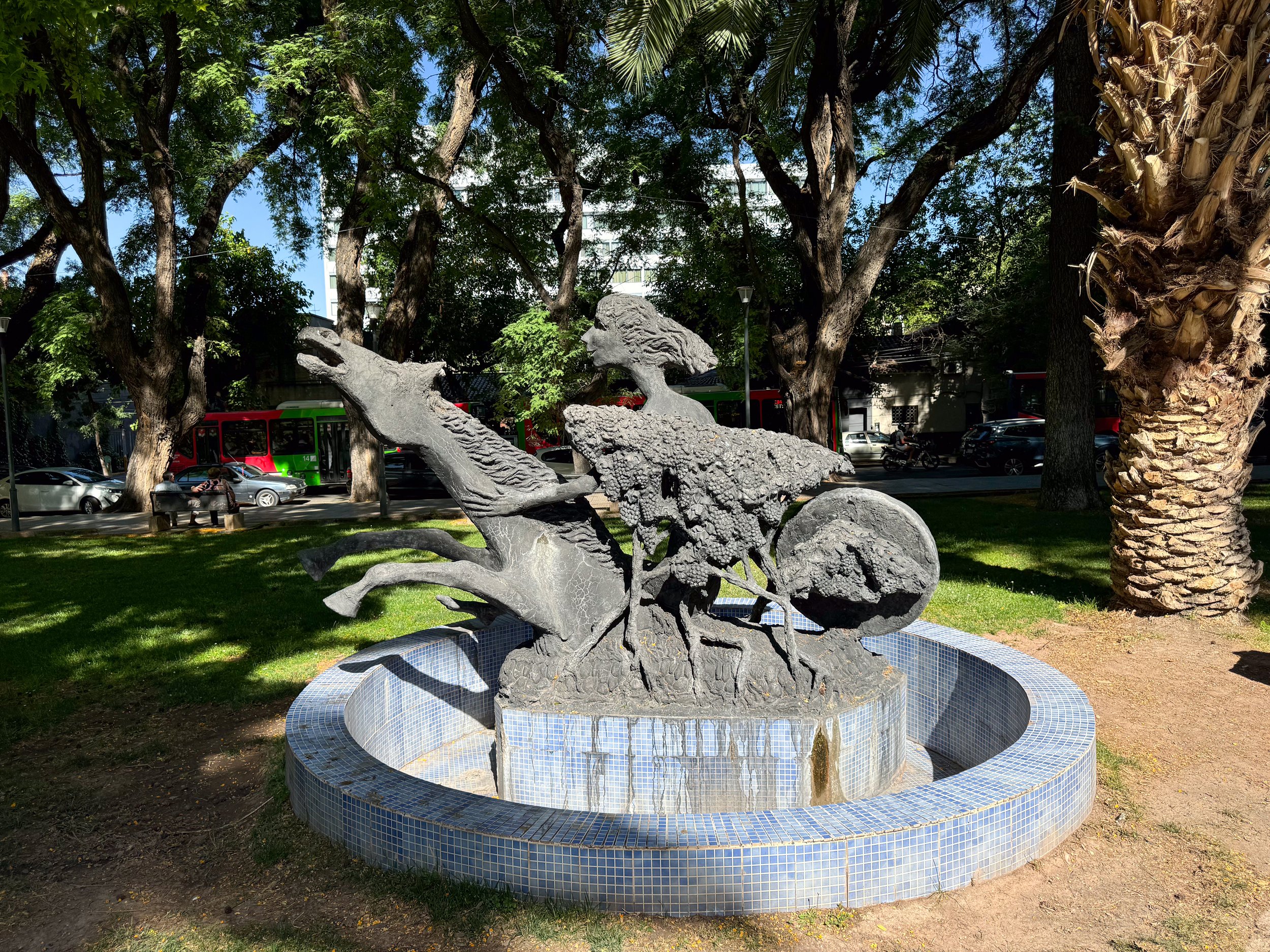
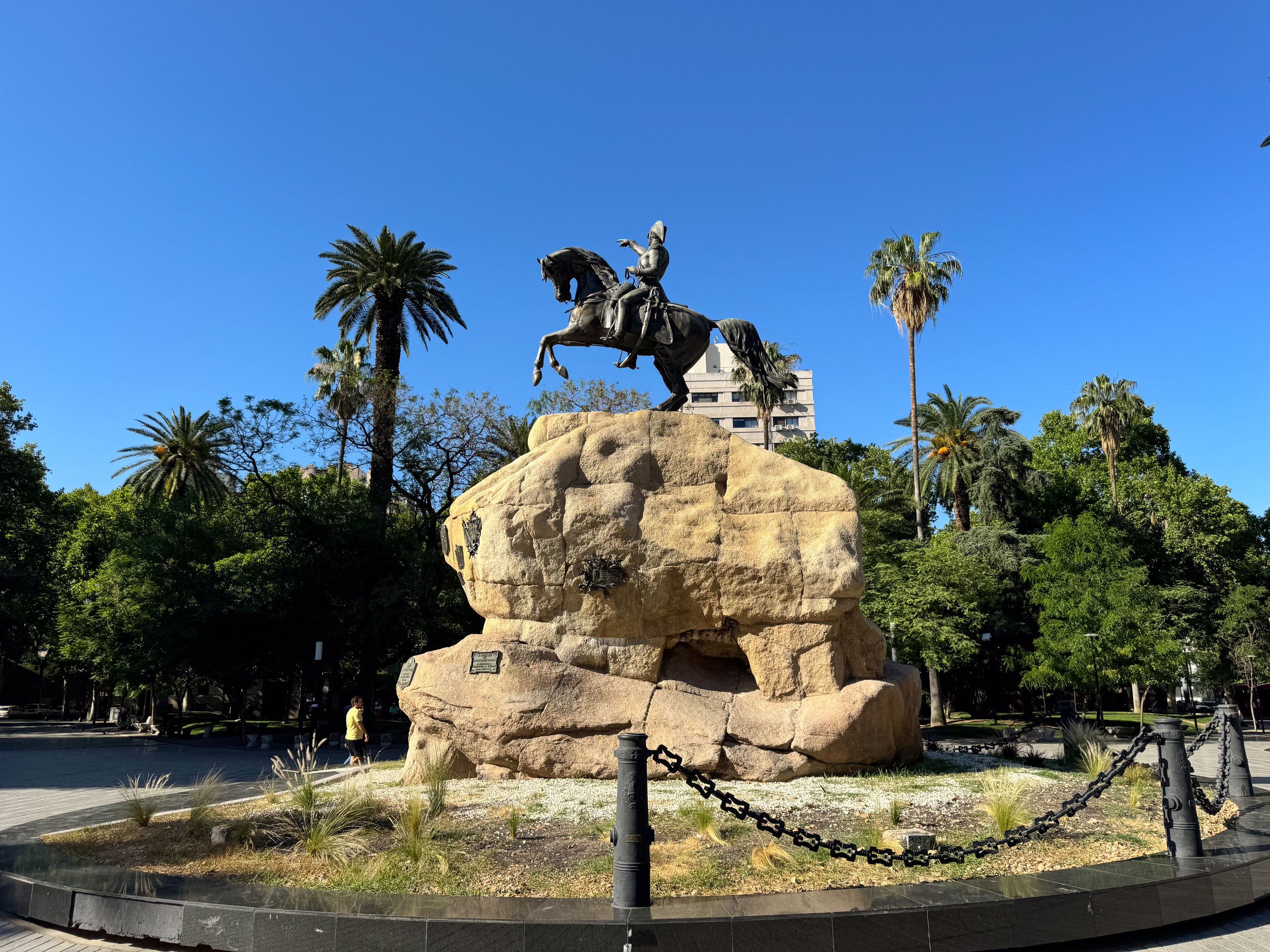
City Plazas and Parks
The city center is organized around a large plaza with four smaller squares a few streets away from its corners. They’re all easy to visit on foot and worth exploring while walking around the city center.
Plaza Independencia. A large treelined square at the center of the city with fountains, a theater and a weekend artisan market. Venders sell handcrafted items like wire metal jewelry, knitted items, leather good, ceramics, watercolor paintings, and knives.
Plaza España. A beautiful plaza with a central fountain, park benches, a monument and walkways covered in colorful and ornate Spanish tiles.
Plaza Italy. A plaza dedicated to Argentina’s Italian immigrants with a fountain at its center telling the story of Dante’s Divine Comedy, a statue of Rome’s iconic wolf, Lupa and numerous others rooted in Italian history.
Plaza Chile. A plaza dedicated to Argentina’s close relationship with neighboring Chile. The plaza has a fountain and park benches covered in mosaic tiles in the colors of Chile’s flag.
Plaza Army. A plaza dedicated to Argentina’s army with a stone monument and a bronze statue of a bronze general riding on top of it.
Parque San Martin. A large city park with a central pond, rose garden and biking trails. We picnicked here on a Saturday, walked along the trails and visited a large tented craft market and small organic food market.
Empanada Crawl
Empanadas are one of Argentina’s most popular snacks. The savory packets of dough are stylized with crimped sides and stuffed with fillings including meats, veggies or seafood. We decided to make a meal out of them and go on an empanada crawl across the city, trying as many vegetarian and pescatarian flavors as possible from multiple restaurants.
Los Inmigrantes - Sucursal Ciudad. A pizza parlor and empanadaera with several types of baked empanadas. We tried four types, the corn with cheese, shrimp with cheese, onion with cheese and spinach with onion. They had a homemade look and taste to them.
Harry’s. A chain restaurant and empanadera with a countertop display of dozens of empanadas ready to order. We visited two locations, trying the tuna, sweet corn, corn with cheese and fried shrimp with cheese. They had a homemade look and taste to them.
De un Rincón de la Boca. A pizzeria with pizza flavored empanadas on the menu. Most have meat however we tried the one veggie option, the capresse. The dough wrapped a tasty filling of tomato, mozzarella and basil.
Costumbres Argentinas. A fast food style deli with deserts, sandwiches and of course empanadas. We tried the vegan version with seasoned soy protein and another stuffed with corn, onion and cheese. They looked a little sad and tasted the most processed.
Have a Picnic!
We visited the Mercado Central and bought an assortment of goodies to create our own Picada style picnic. From the various vendors, we bought a bottle of Malbec, baked empanadas, green olives, fresh apricots, cherry tomatoes, a triangle of cheese, dried breads and alfajores. We brought our spoils to a shaded spot overlooking the lake in Parque San Martin and enjoyed for the afternoon.
What to Eat & Drink
Outside of empanadas, wine and meat, Argentina has a few more popular staples of their cuisine.
Picadas. Argentinian style charcuterie or plates of pickings “pickings” often including cheeses, pickled veggies and meats.
Rabas. Fat rings of Argentinian style fried calamari. It’s a common restaurant appetizer and snack at bars.
Milanesa. The classic Italian dish of a breaded and fried protein is popular across Mendoza. Unable to find a vegetarian version, we made our own Eggplant Milanese with a tomato and onion sauce.
Medialunas. Sweet Argentine style croissants often served at breakfast.
Alfajores. Two sugar cookies with a generous layer of dulce de lèche sandwiched in between and coated in coconut shavings or covered in chocolate.
Olives. In addition to grape vineyards, olive groves are plentiful across the region. Pickled olives, olive pate and olive oils are common snacks and ingredients on menus.
Fugazza. Argentinean style pizza made with a thin crust and fluffy dough topped with any number of toppings. Traditional places bake it in a coal or wood fired oven.
Provoleta. Grilled and melted Argentinean provolone cheese seasoned with oregano and olive oil It’s often served with bread for dipping.
Local Beer. Outside of wine, Mendoza has a small beer scene with breweries, beer gardens and local beers.
Cerveza Patagonia. An Argentinian brewery with a range of locally brewed beers. We ordered the Vera IPA, a mildly hoppy and citrusy beer, and the Lager del Sur, an easy drinking beer with a slight sweetness.
Chachingo Arístides. A craft beer garden with a menu of locally brewed beers. We tried the Blonde Ale, light and refreshing, and IPA, mild and hoppy.
Andes Origen. A local brand of beer with several varieties. It’s advertised and seen on menus across the city. We tried the Roja, a light and nutty flavor with a slight sweetness.
Where to Eat & Drink
Soberana. One of the fancier restaurants in the town in a contemporary building. We ordered the buratta, basket breads and seafood pasta to share.
Che Picadas. A restaurant serving Picadas (Argentinian style charcuterie). They provide a platter of them for free with any order of food! We ordered the classic spread for two with a Spanish tortilla, six caprese empanadas and rabas (calamari).
Zitto. A chain restaurant and bar with a 2x5 happy hour. After walking around, we cooled down and relaxed with two Aperol Spritz.
Va Vene. A cafe chain with locations across the city with alfajores, frozen pasta and coffee.
La Dolce. A house in the Maipu Valley converted into a cafe with artisan coffee and sweet breakfast dishes like medialunas, waffles and pancakes. Try the waffles covered in dulce de lèche and sliced bananas.
Safety & Good to Know
Mendoza is generally safe however petty theft, pickpocketing and snatch and grabs can happen. Keep phones and wallets in front pockets while walking around and never sitting on the table or bar when dining out.
Outside of vineyards, most places only serve wine by the bottle though there’s typically a house red and white by the glass.
When dining out, glasses of wine and occasionally bottles are cheaper than cups of coffee.
Credit and debit card is widely accepted.
Tipping is almost always done in cash. 10% is the generally accepted amount.
Many restaurants don’t open for dinner until after 8pm.
The city center is very walkable but use Ubers or taxis for longer distances.
For Next Time…
Tour the Uco Valley. A wine producing region about an hour south of Mendoza with vineyards and wine tours.
Nature Sights. Outside of visiting vineyards and drinking wine, we would return to see some of the regions natural sights including:
Parque Provincial Aconcagua. An Andean park with the tallest mountain in the Southern and Western hemispheres. On a clear day, it’s visible from Mendoza.
Lago Potrerillos. A deep blue reservoir in the foothills of the Andes Mountains with boating, hiking and watching the sunset.
Lake Titicaca
Lake Titicaca is a massive Andean lake bordering both Peru and Bolivia. It’s culturally significant for its floating village, terraced agricultural islands, colorful handmade textiles and dishes made from lake fish.
Lake Titicaca
Lake Titicaca is a massive Andean lake bordering both Peru and Bolivia. It’s culturally significant for its floating village, terraced agricultural islands, colorful handmade textiles and dishes made from lake fish. We spent three full days on the lake, exploring both the Peruvian and Bolivian shores.
The Uros Islands, Peru
The Uros Islands are a series of floating islands on Lake Titicaca made from buoyant mud bricks and totora, a reedlike grass that grows in the shallows and marshes of the lake.
The Totora
The totora is invaluable to the Uro people. It’s grown, harvested and dried then woven into blankets and bundles for use. It’s used to make everything from the floating islands themselves, to the houses people inhabit, the benches people sit on, the boats they navigate with and even hats, umbrellas and sculptures.
Everything made from the totora needs to be maintained. Each morning, we spotted boats carrying fresh cut totora to the islands. The fresh totora is layered across the surface of the islands monthly while houses, boats & sculptures are remade every two years. The islands, if maintained, can float for up to 40 years before needing to be rebuilt.
Life on the Islands
Each island houses a family with different structures used for sleeping, storage and eating. The grandparents even have a special cone shaped house that sets them apart as the elders while most others have a standard pentagon shape.
Fishing used to be the primary business for the Uro people, today it’s tourism and handicrafts. This allows them to continue their way of life and share their community with the world. They gifted us handmade necklaces, we purchased a table runner and miniature totora boat for breads and fruits.
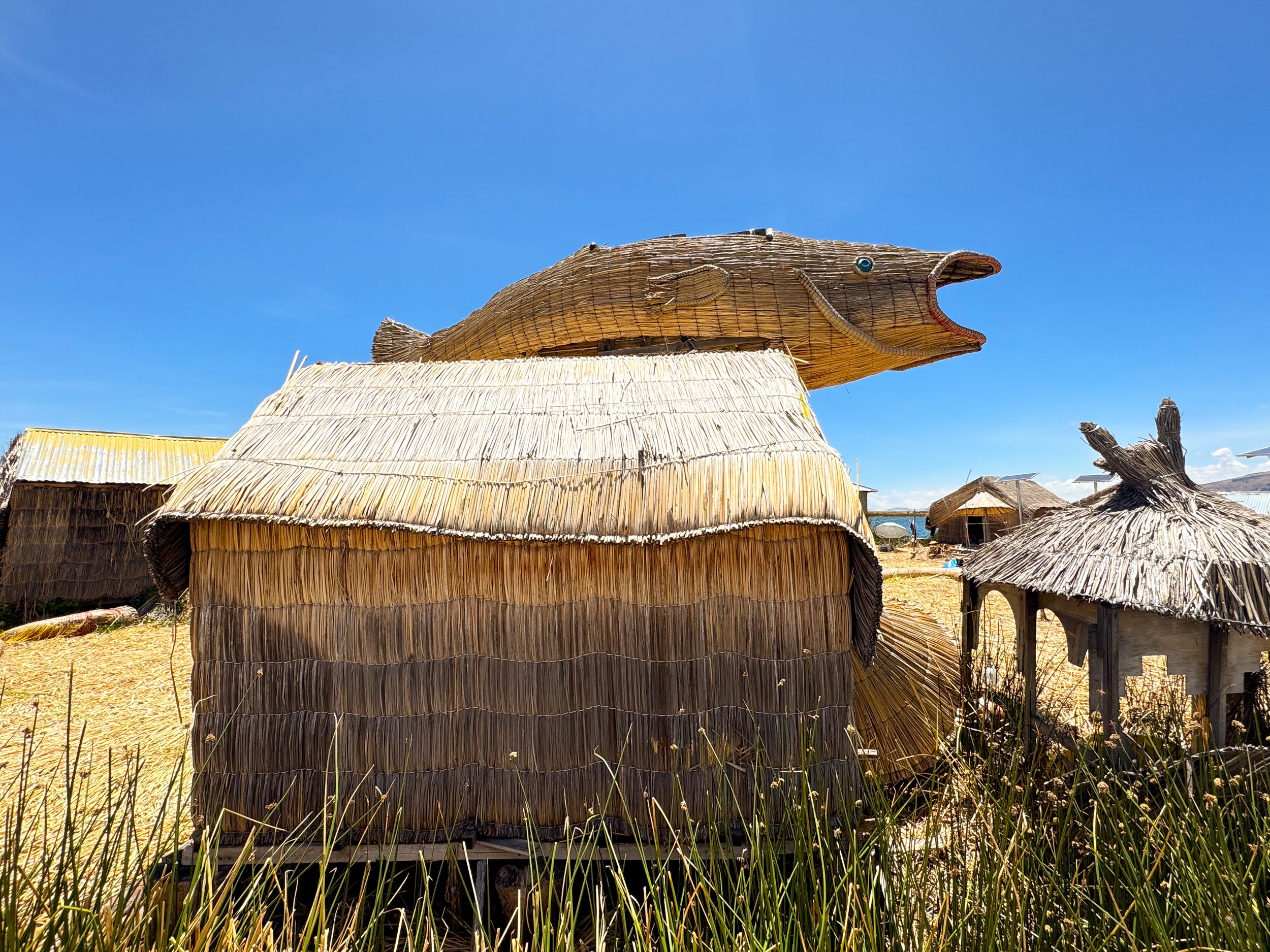
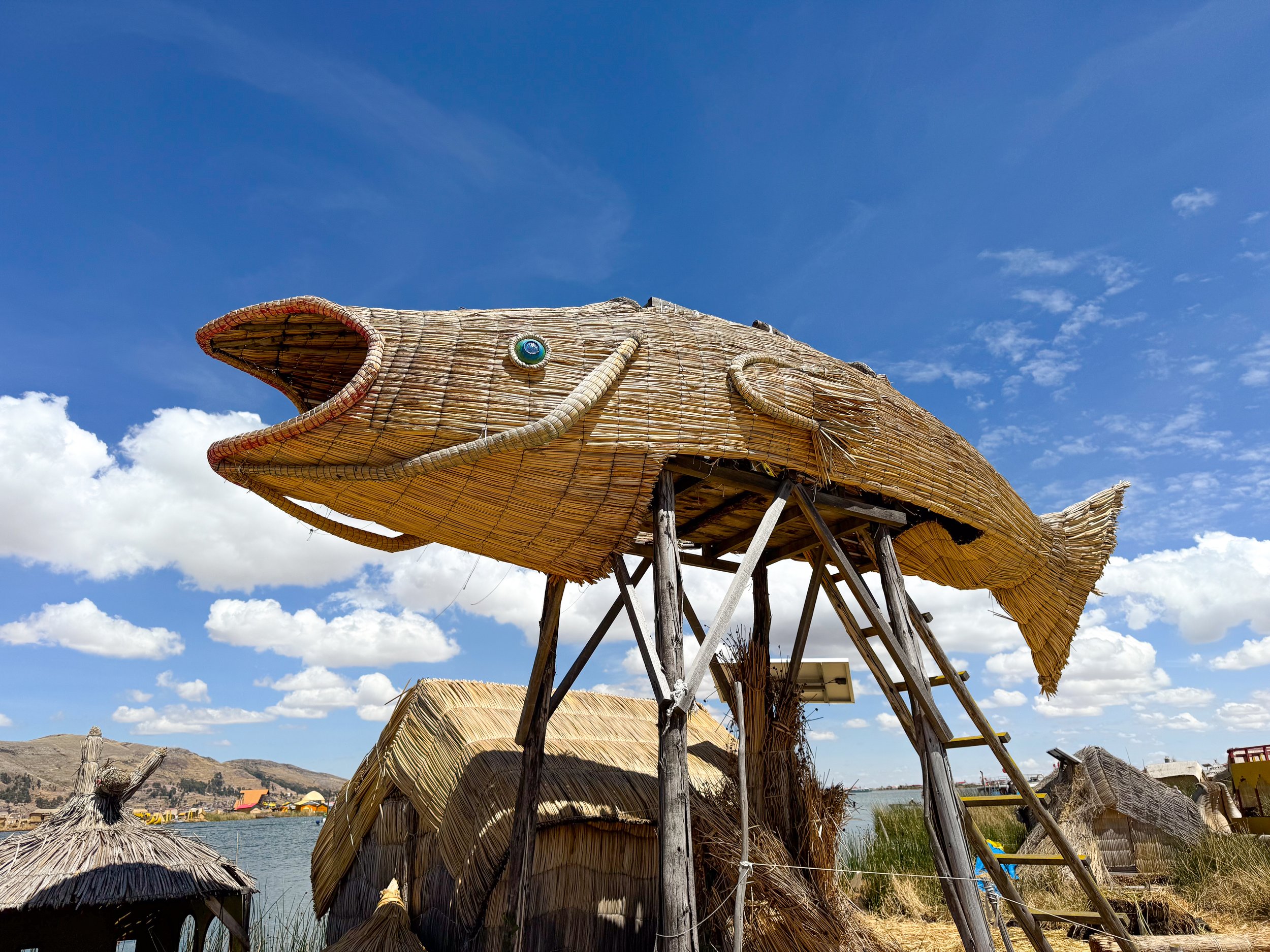
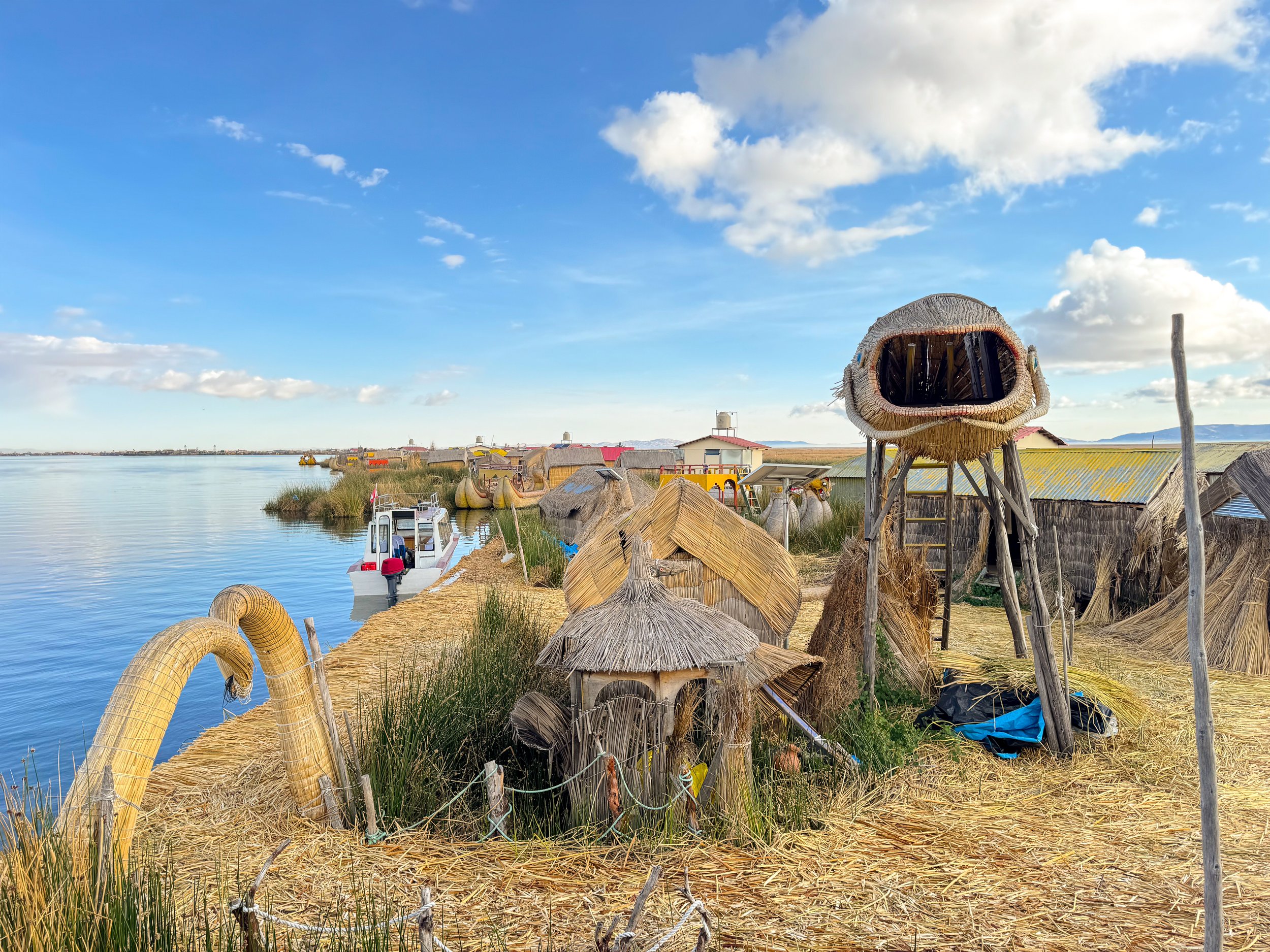
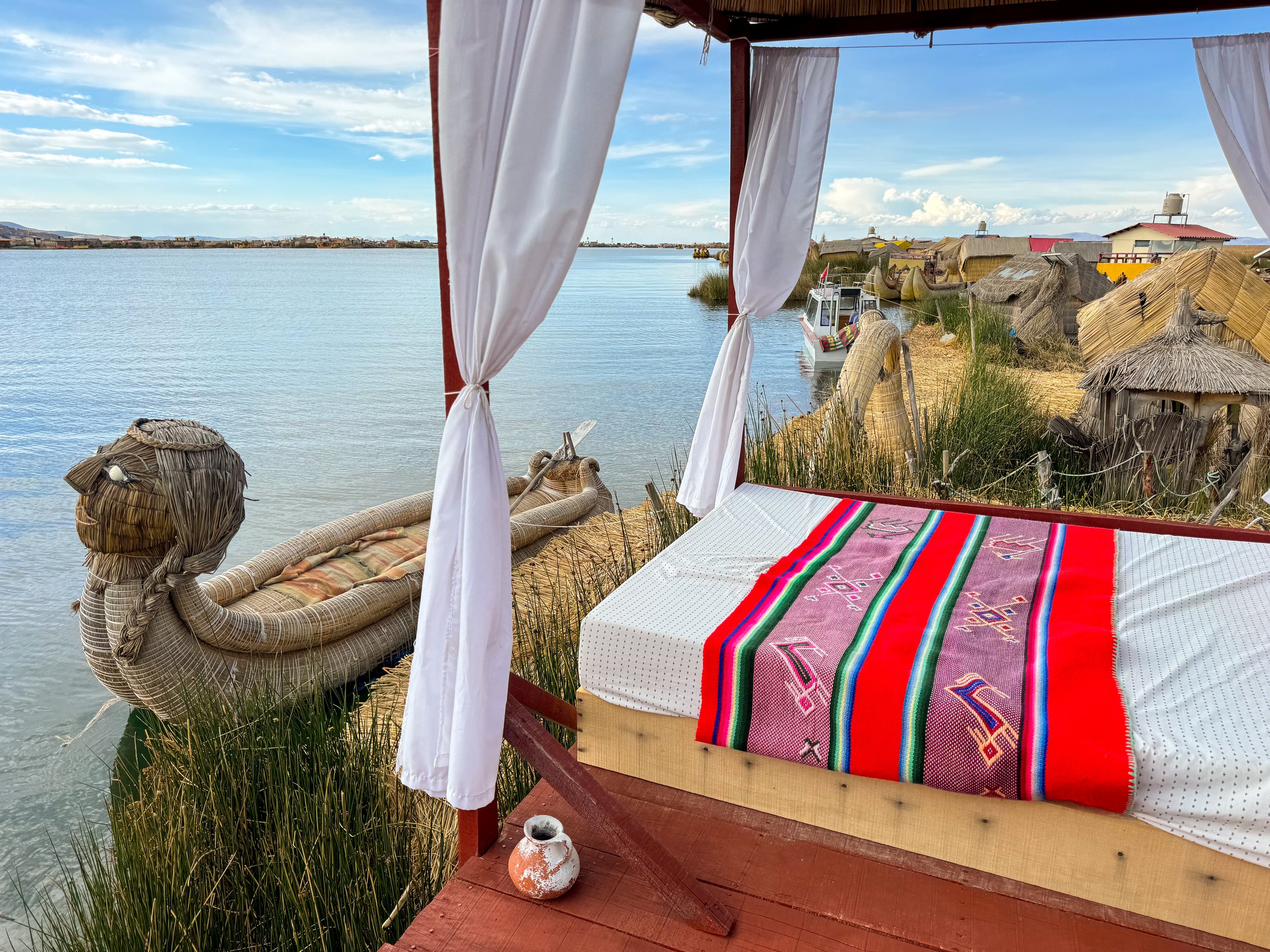
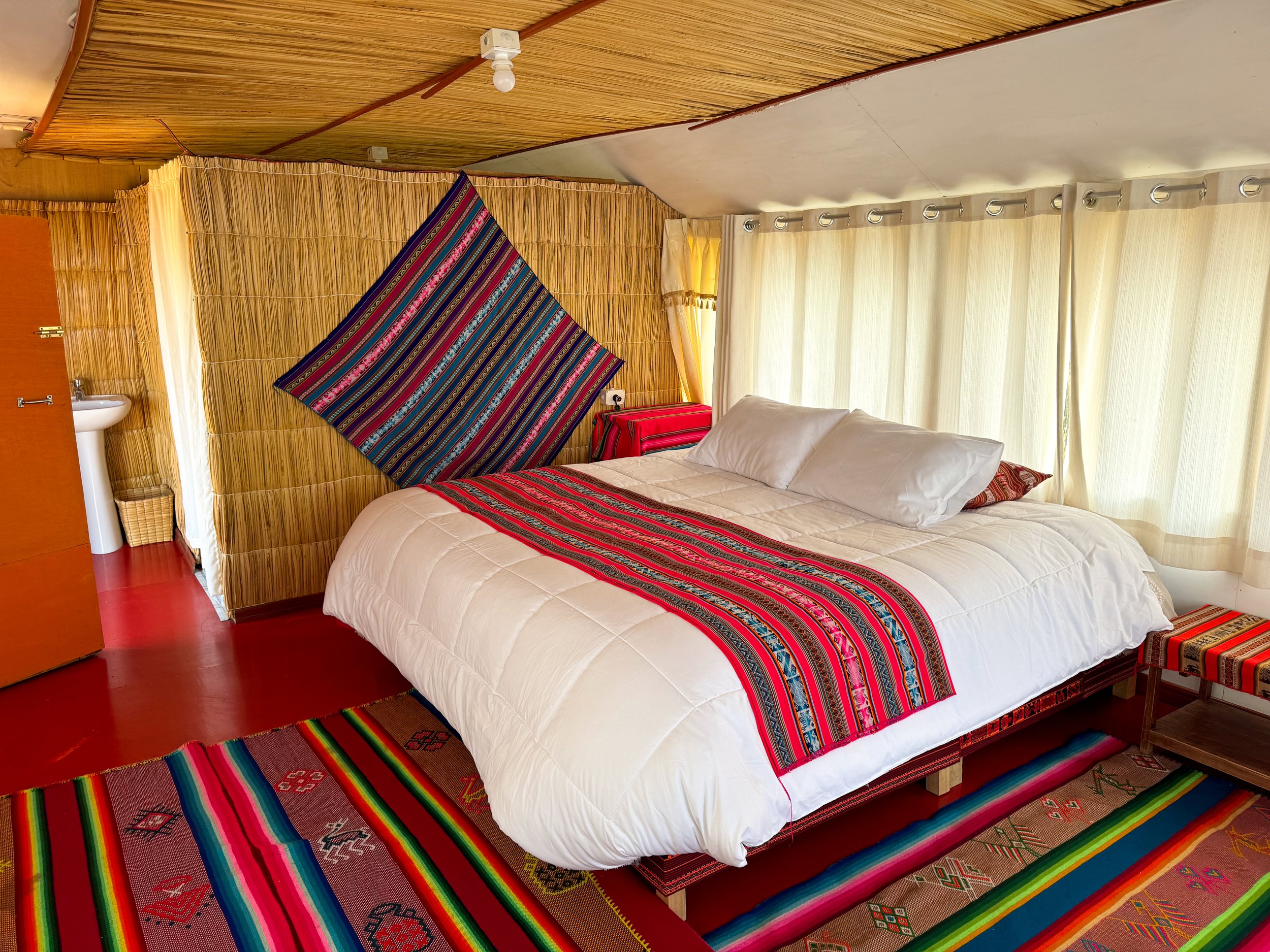
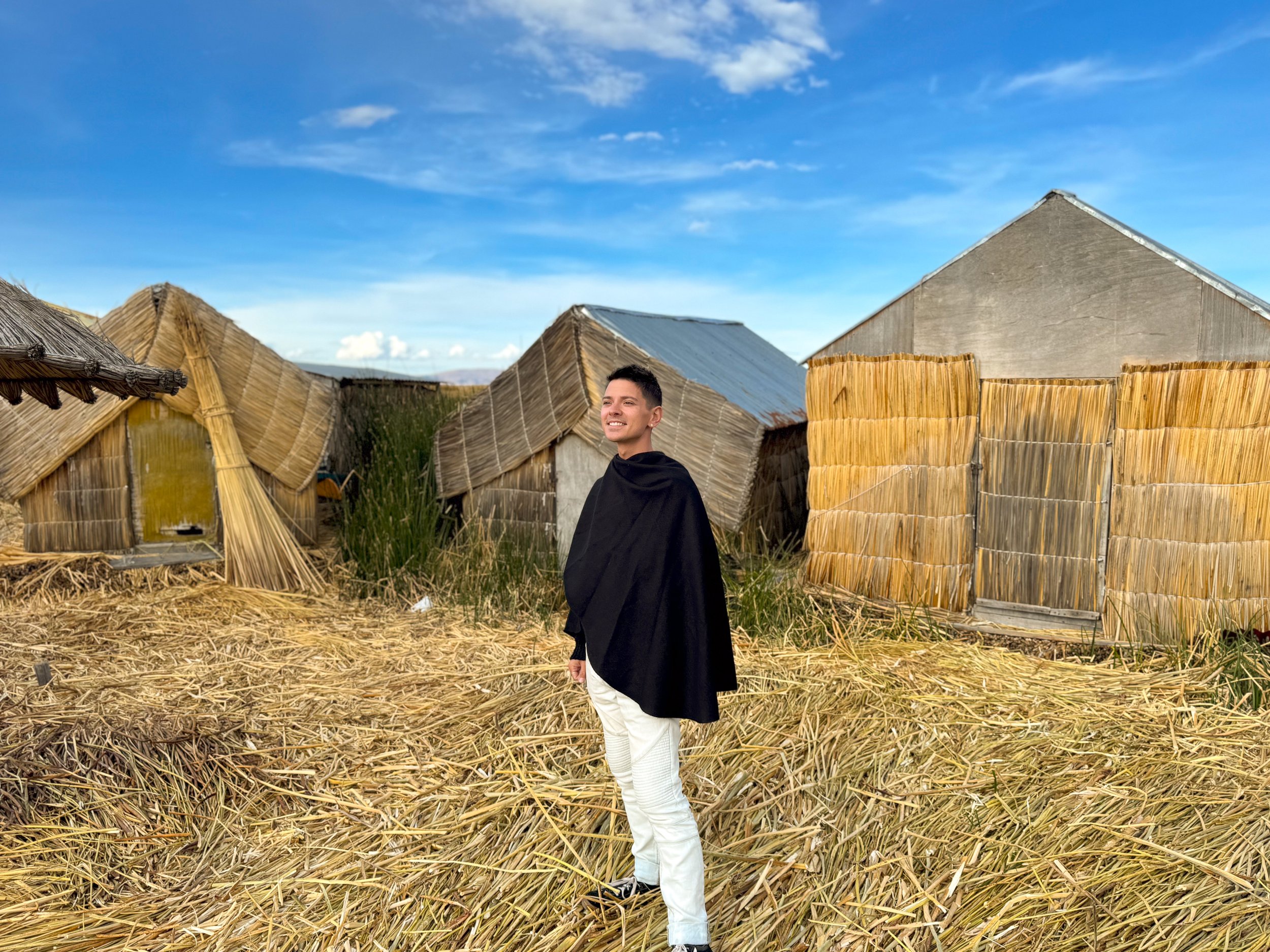
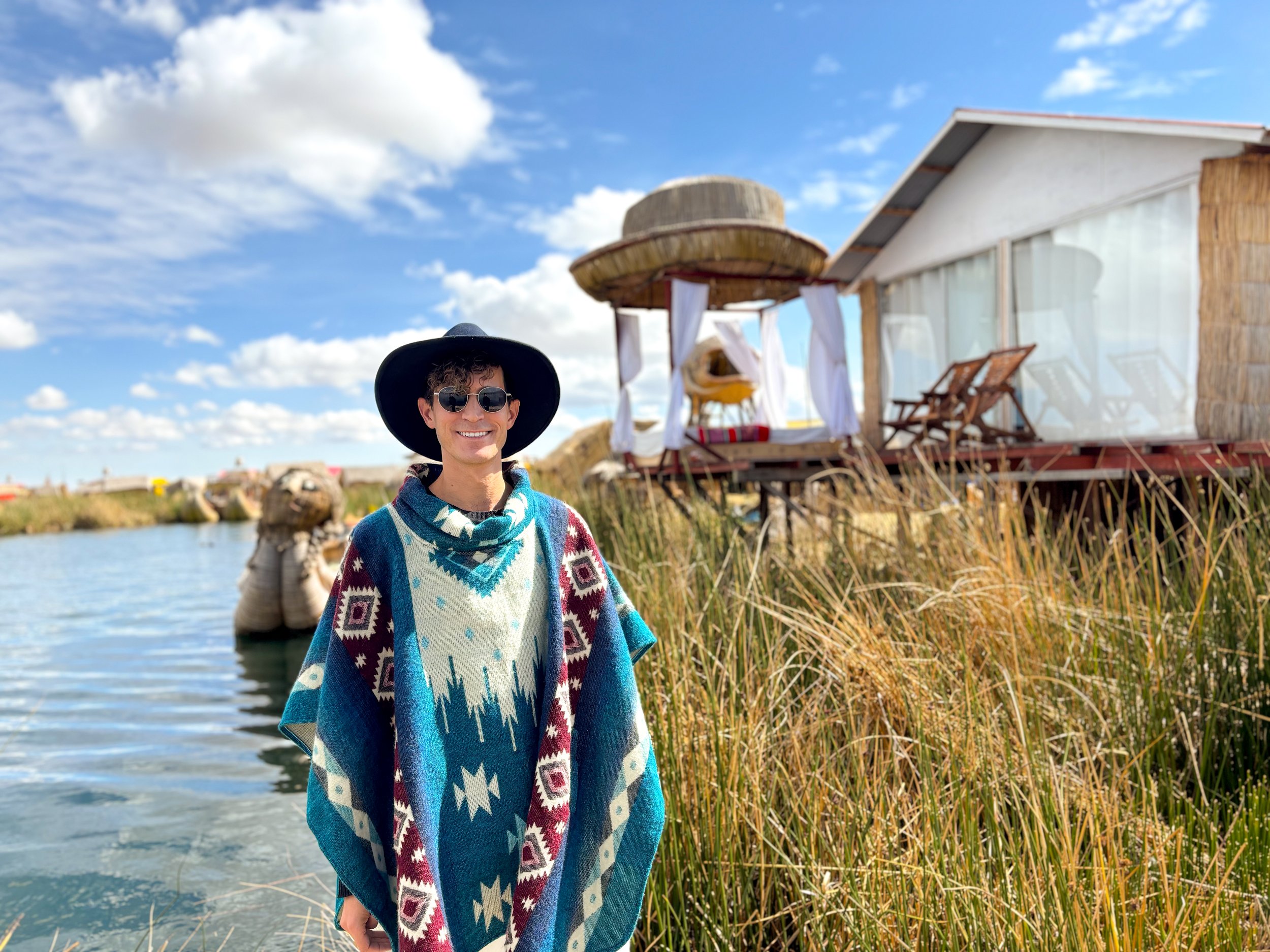
Home Stay at Isla Jacha Challwa
We stayed with a family while visiting the Uros Islands. They named their island, Isla Jacha Challwa, which translates to giant fish. They even built a lookout tower with a giant totora fish for its design! As we explored the island, the totora crunched beneath we our feet and the entire island rocked gently as passing boats created a small wake.
The house we stayed in was covered in the dried totora and the interior was decorated with colorful woven textiles. It had a patio that opened up to the lake with lounge chairs and an outdoor bed topped with a large woven hat for shade. We napped here and watched the sunset. Book here!
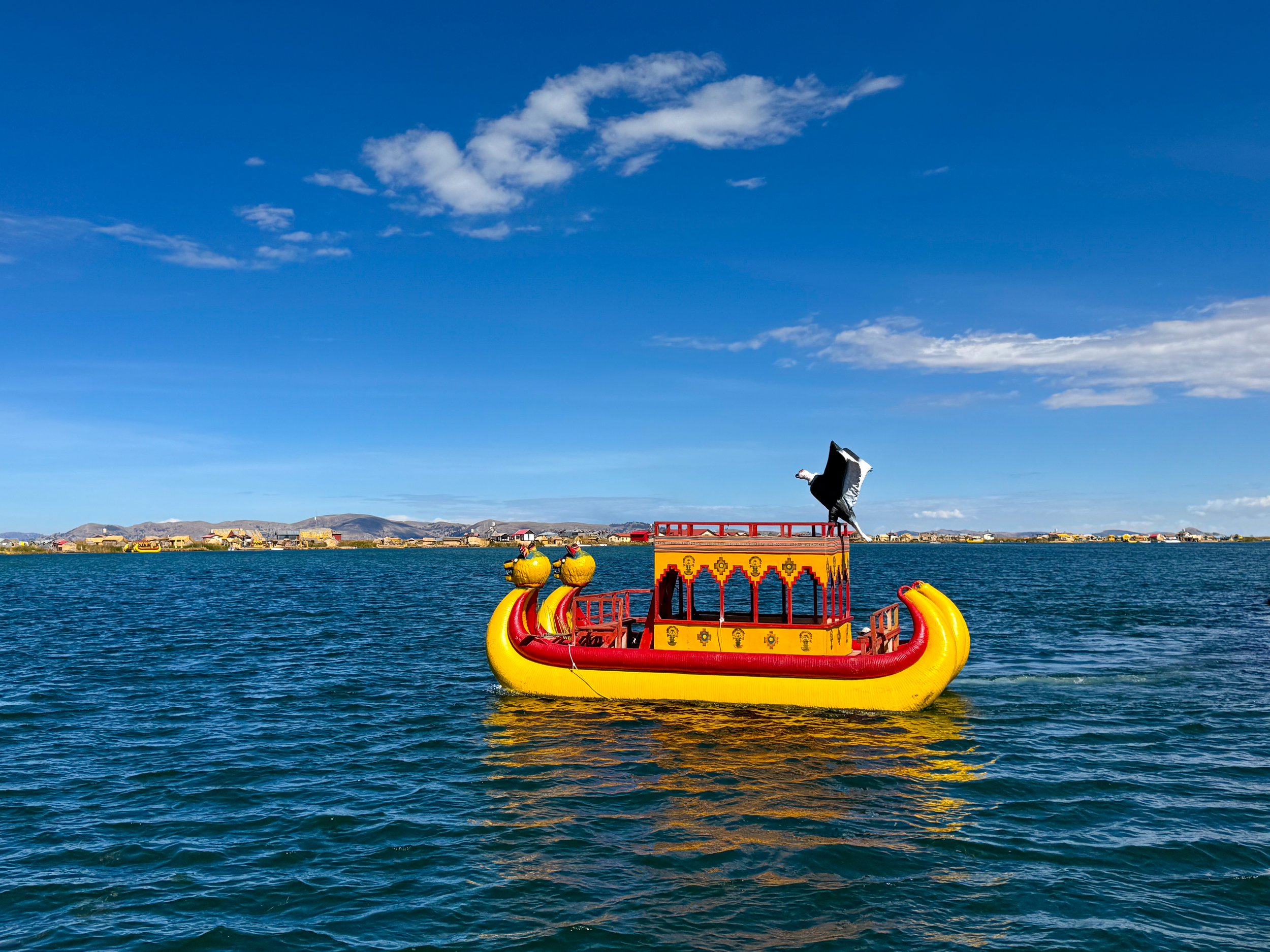
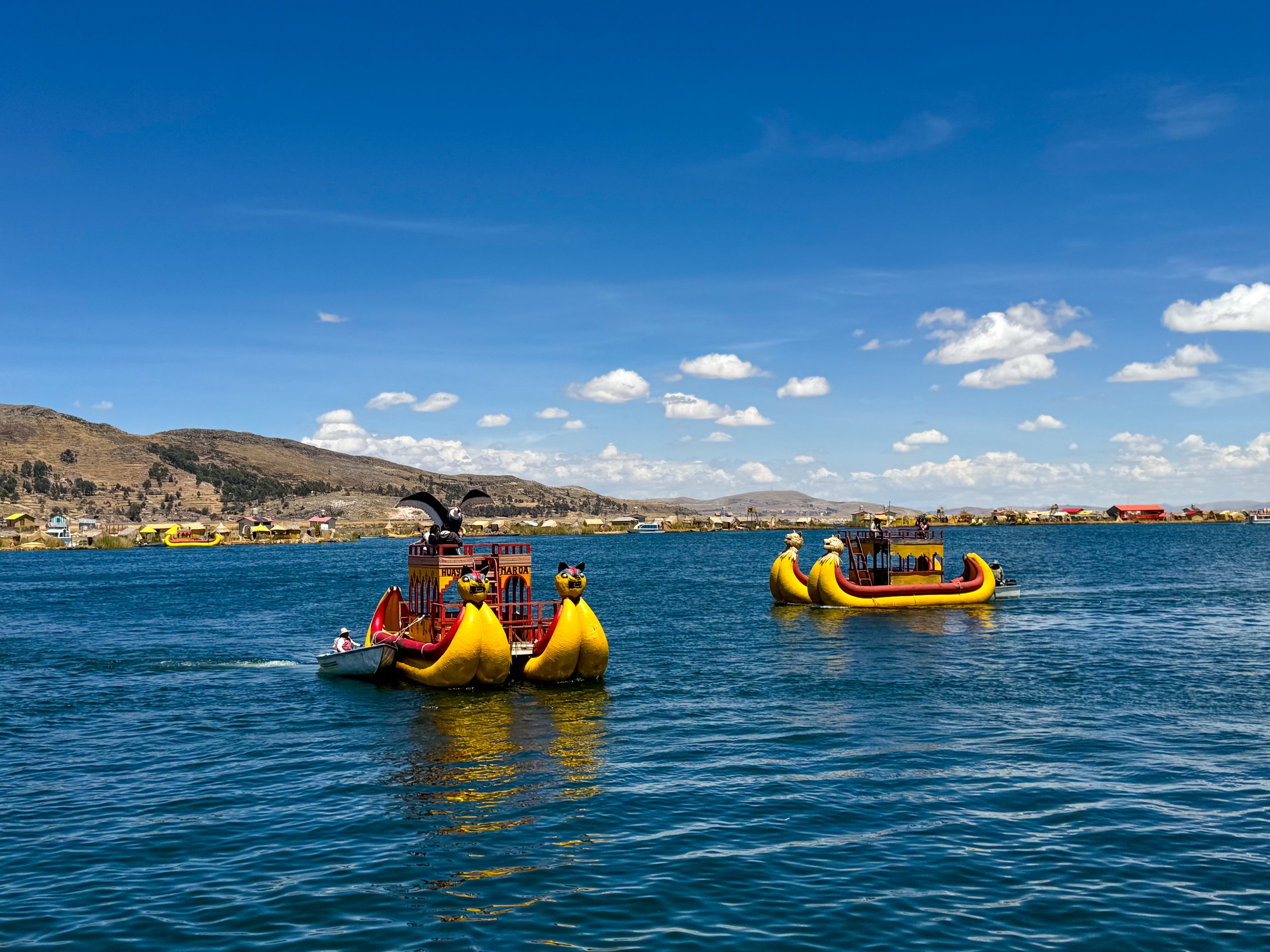
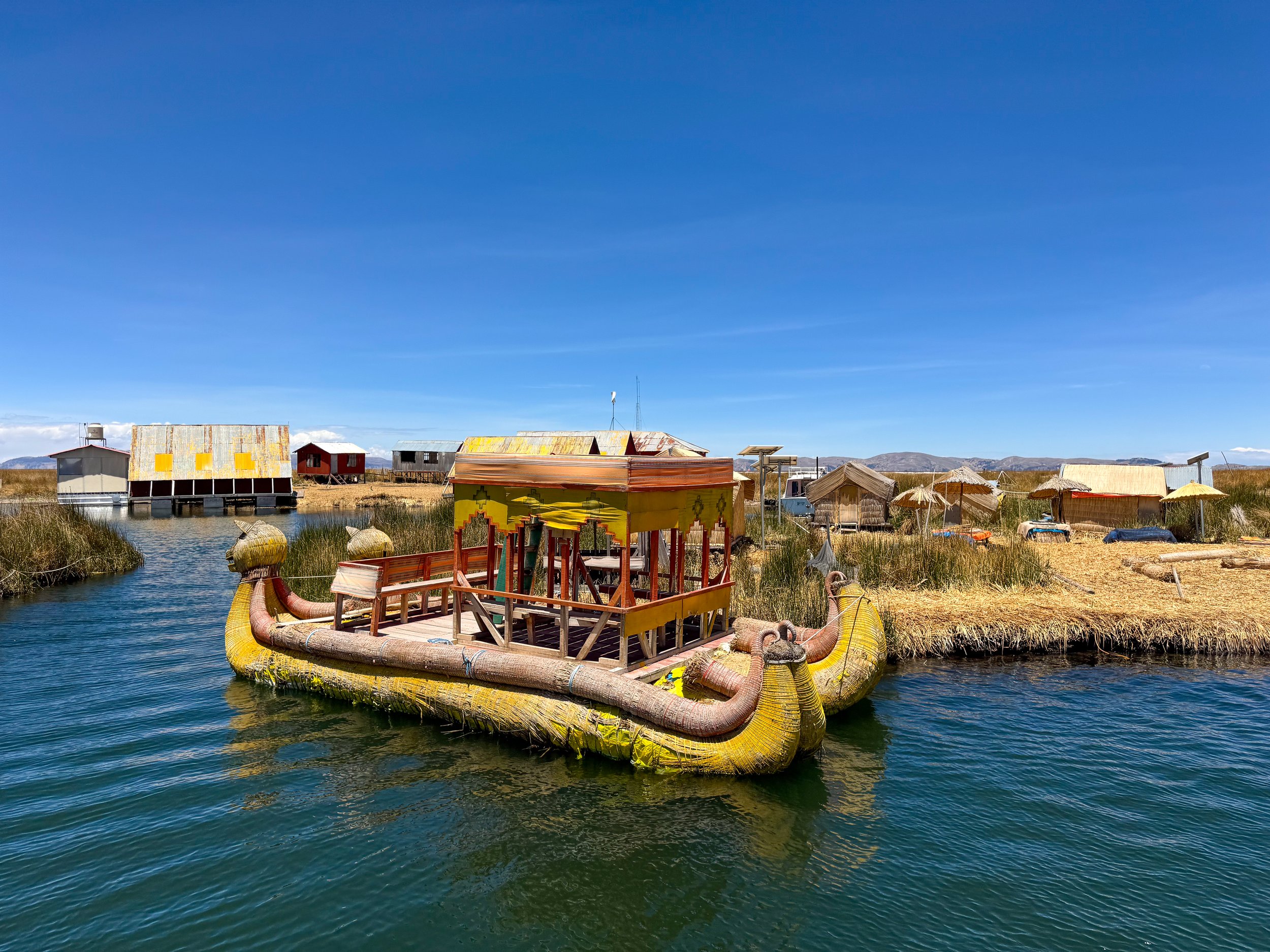
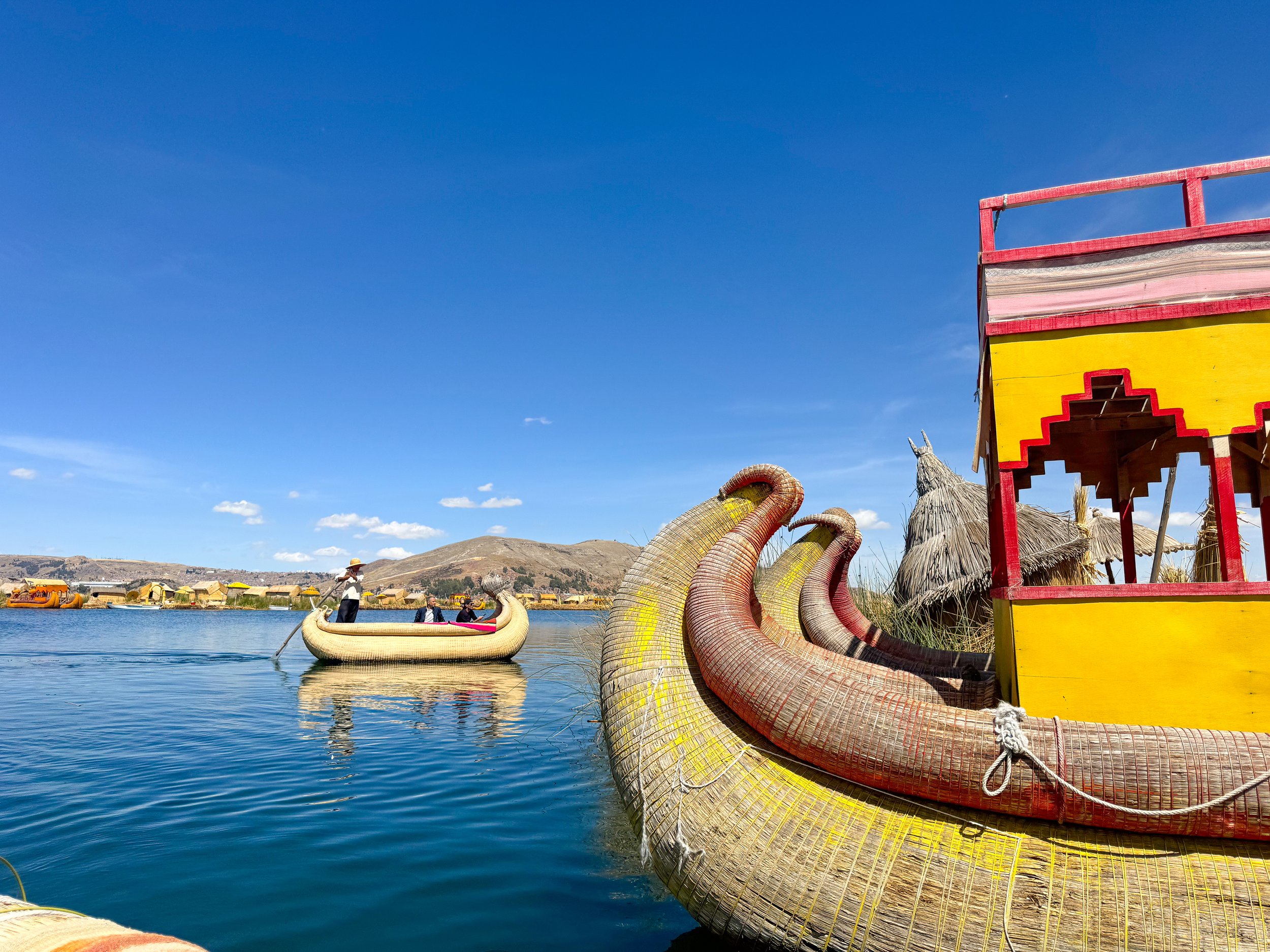
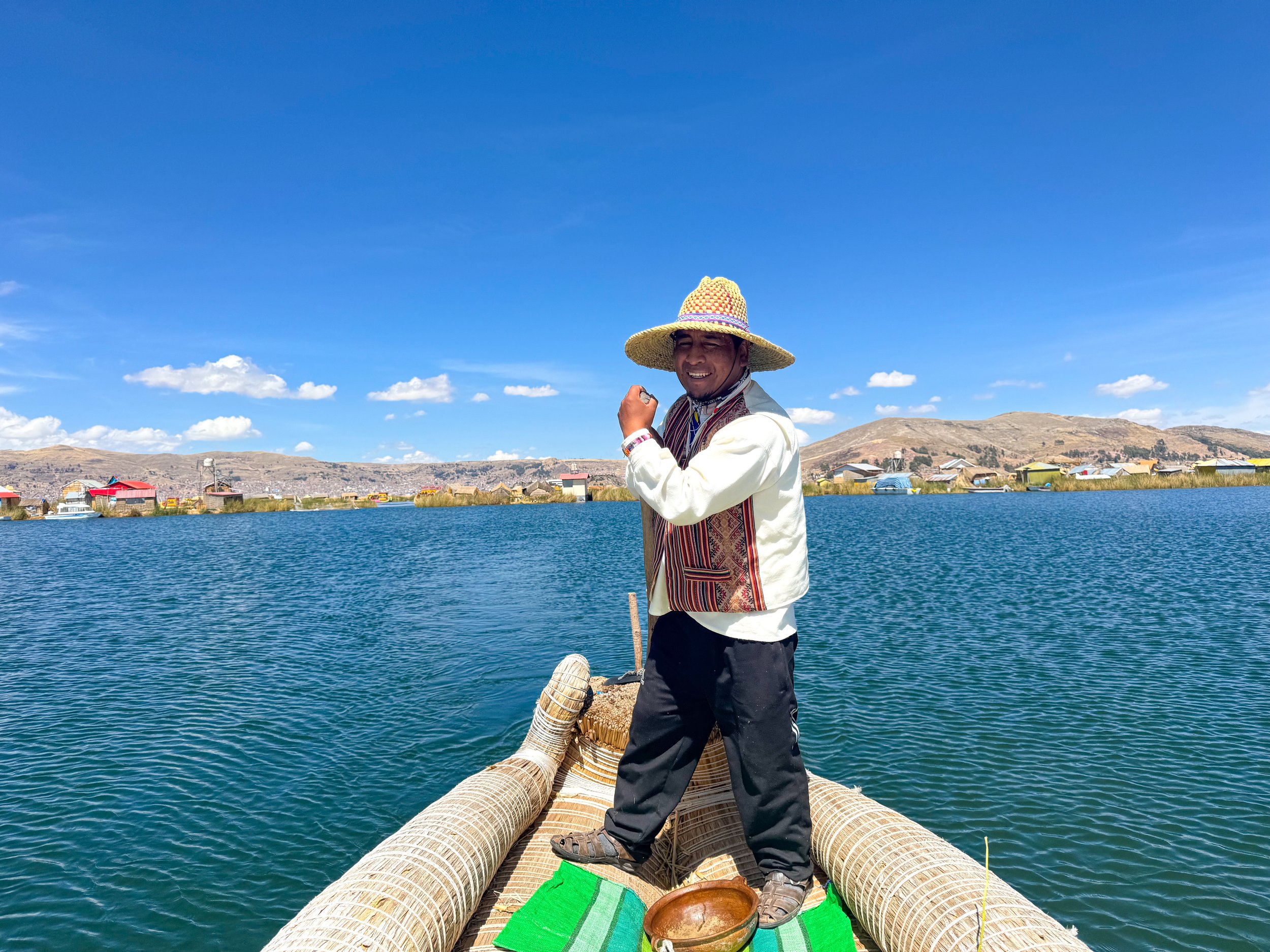
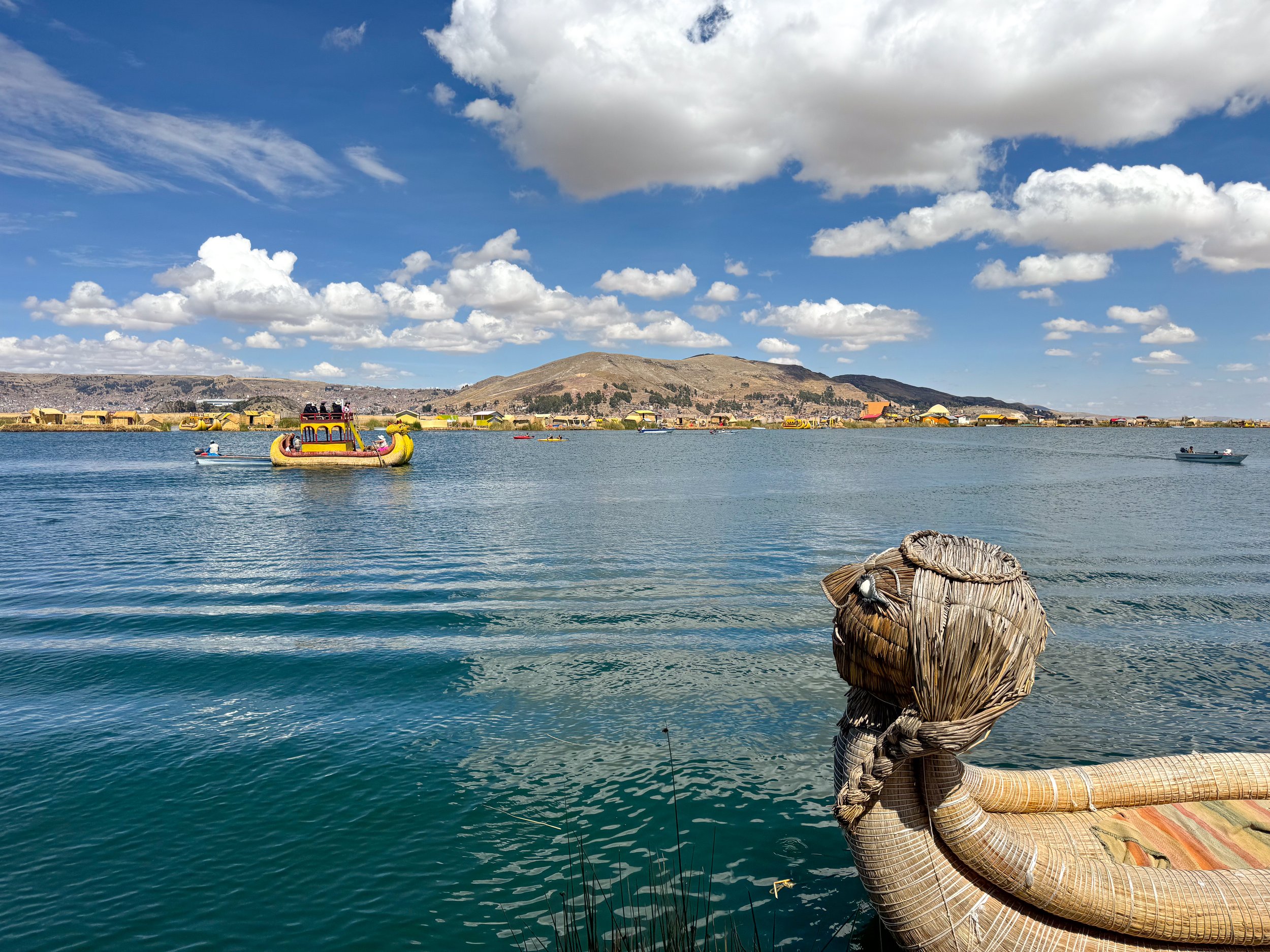
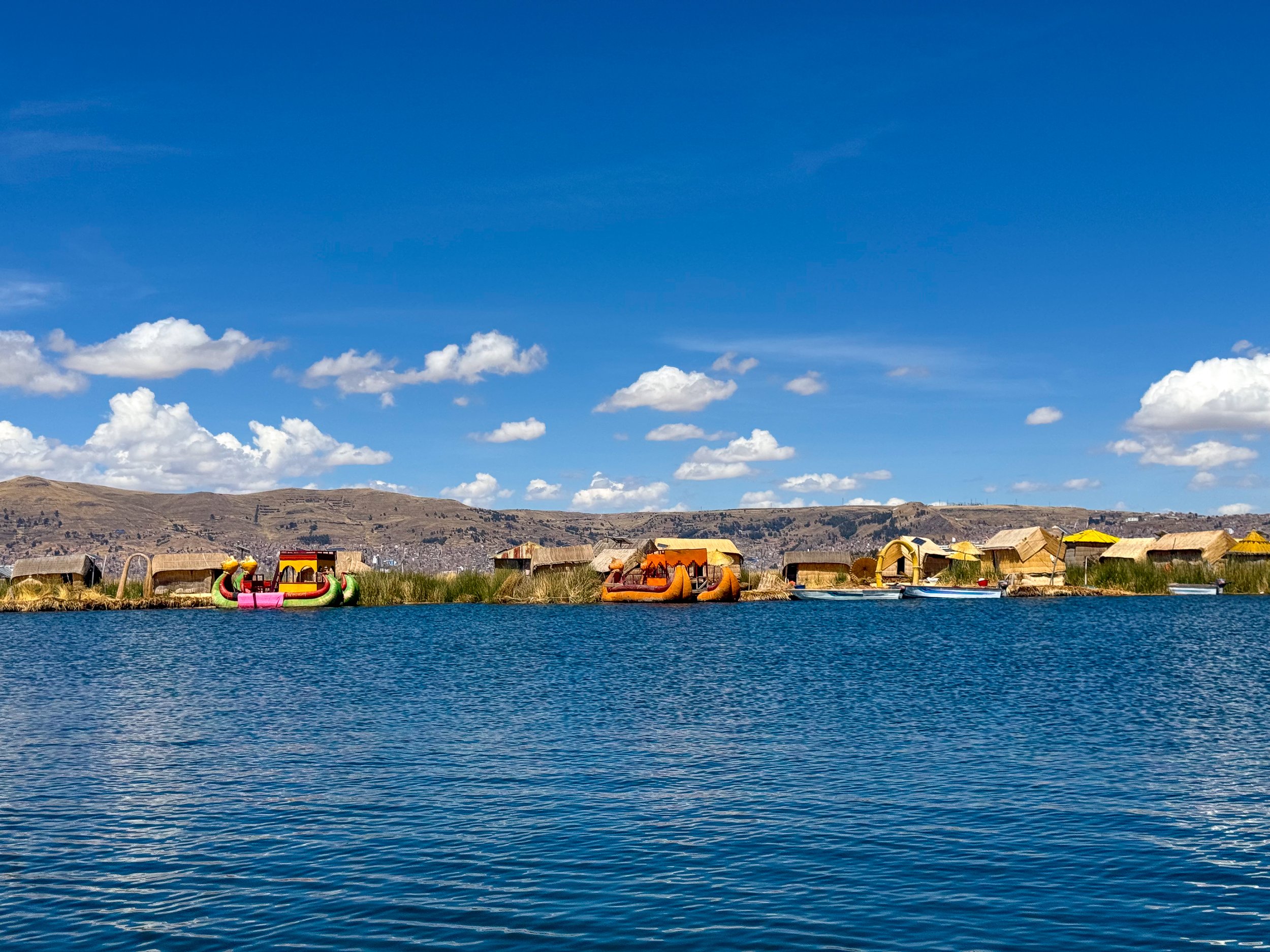
Caballitos de Totora (Totora Boats)
Caballitos de totora are the traditional boats used by the Uro people. Made from totora, they’re shaped into the body of a snake with the head of a puma. The larger boats are made from two smaller ones adjoined by a wooden platform. Some even have a sculpture of a condor or the sun as decoration. Many are left natural while others are painted in a yellow protective coating. The smaller boats are hand paddled while the larger ones are tugged by a motor boat.
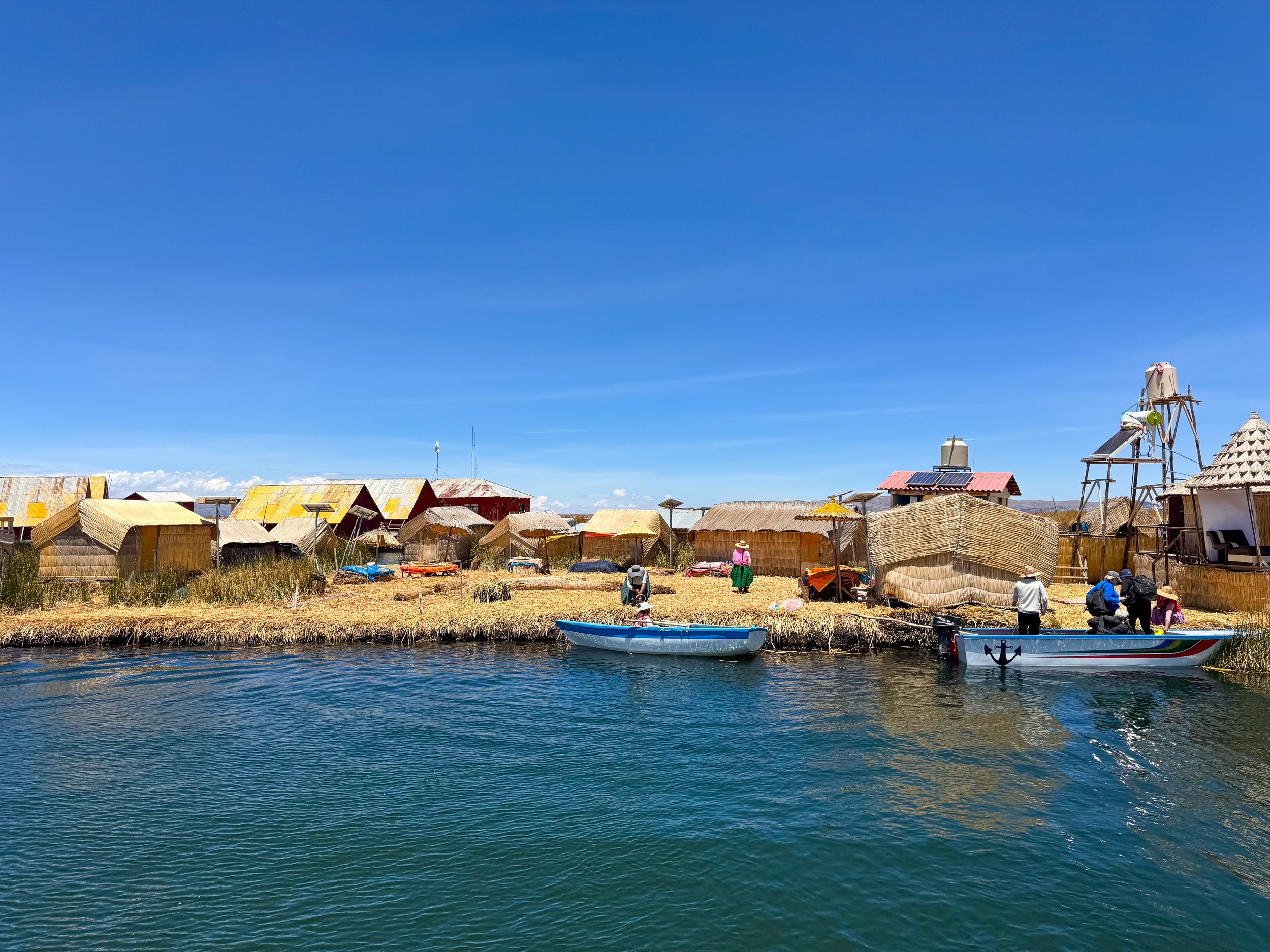

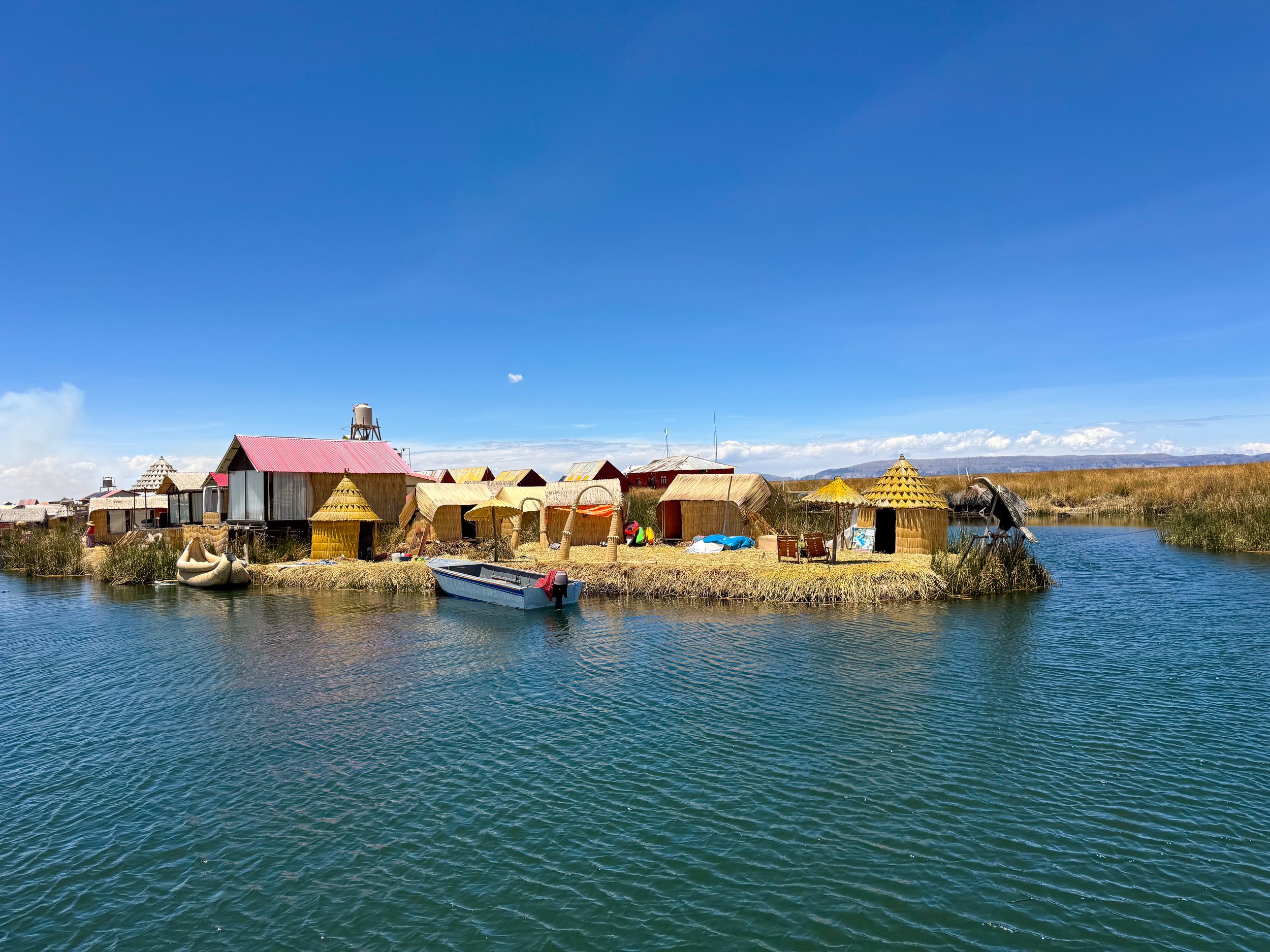
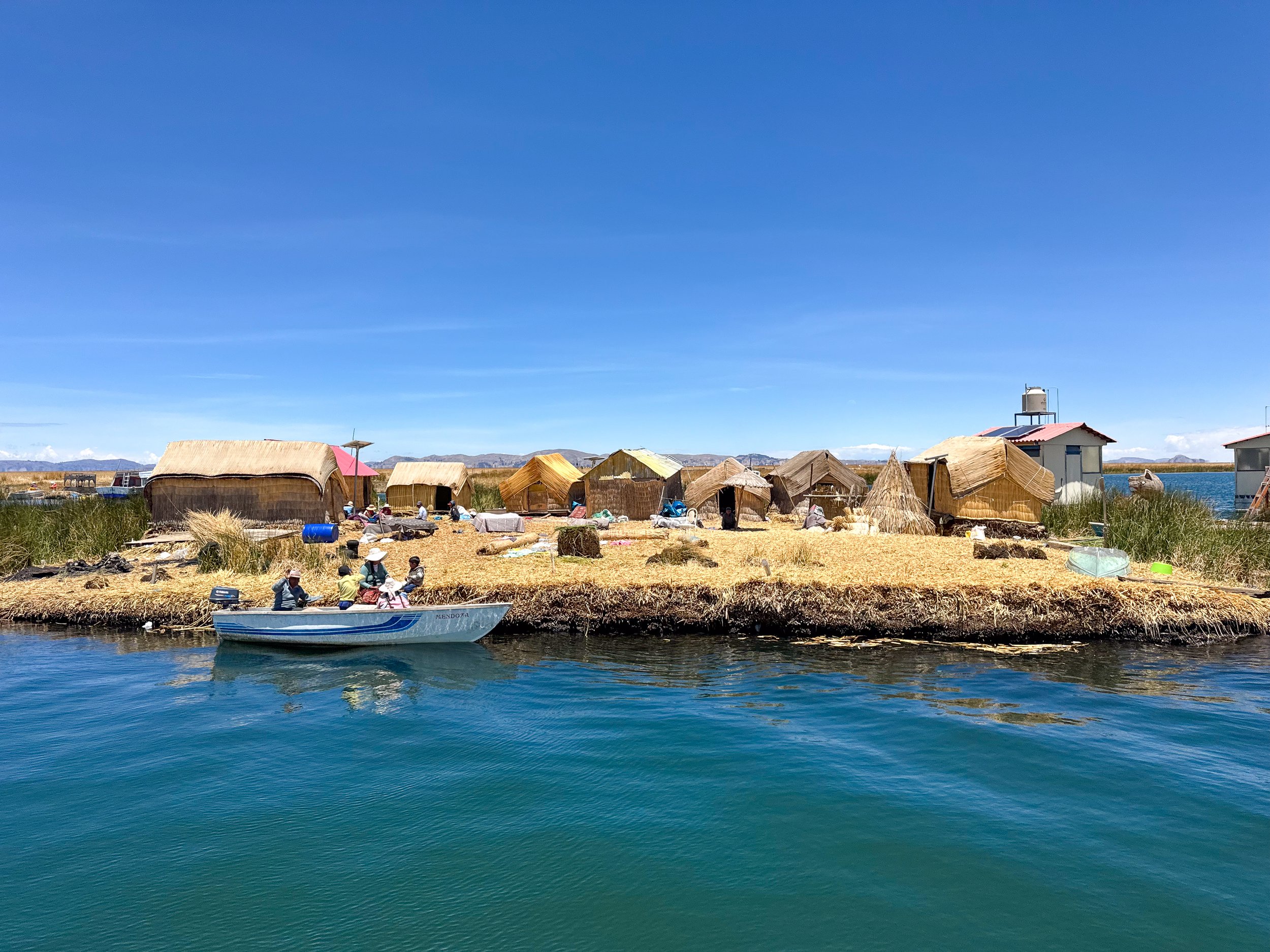
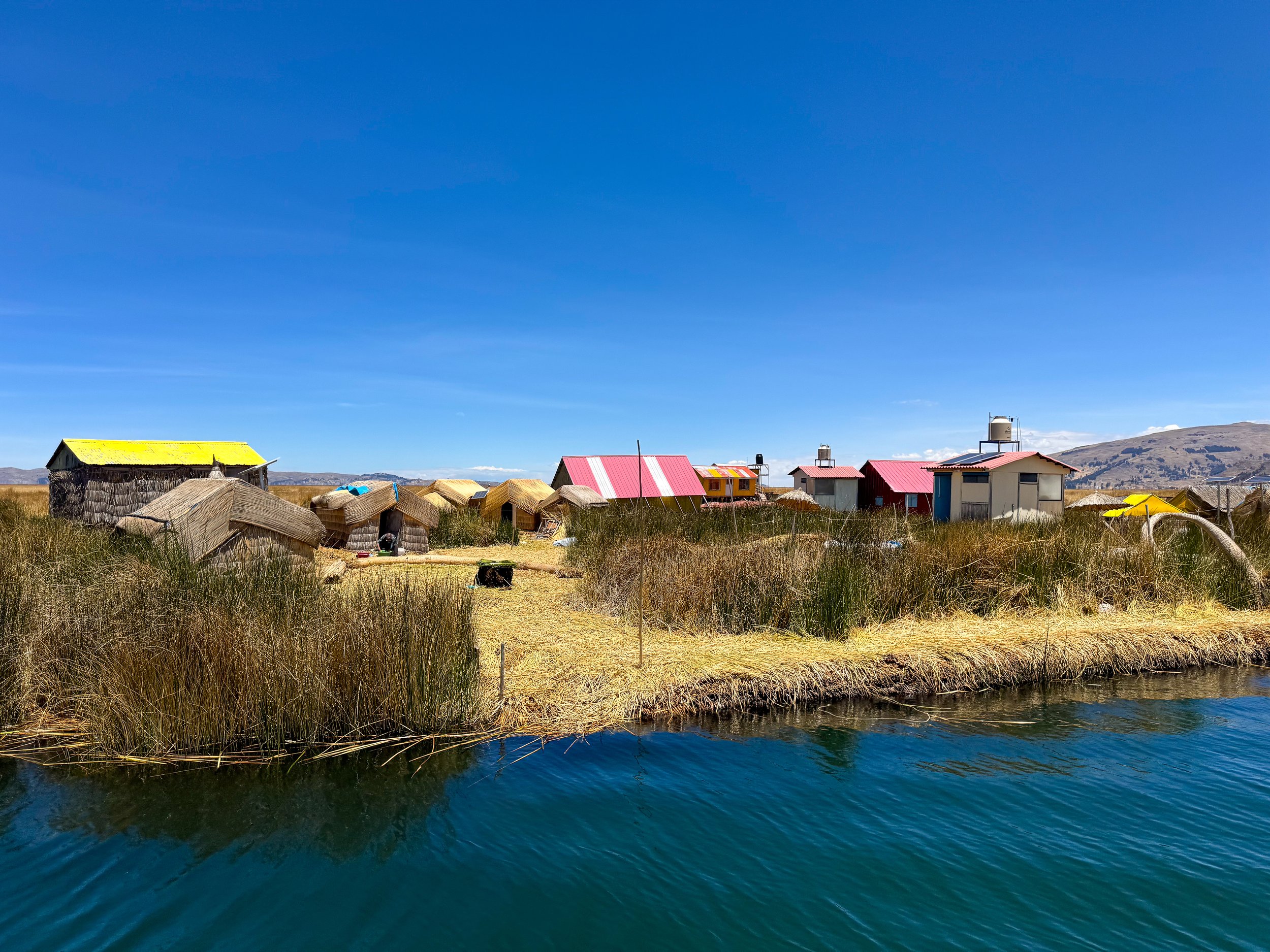
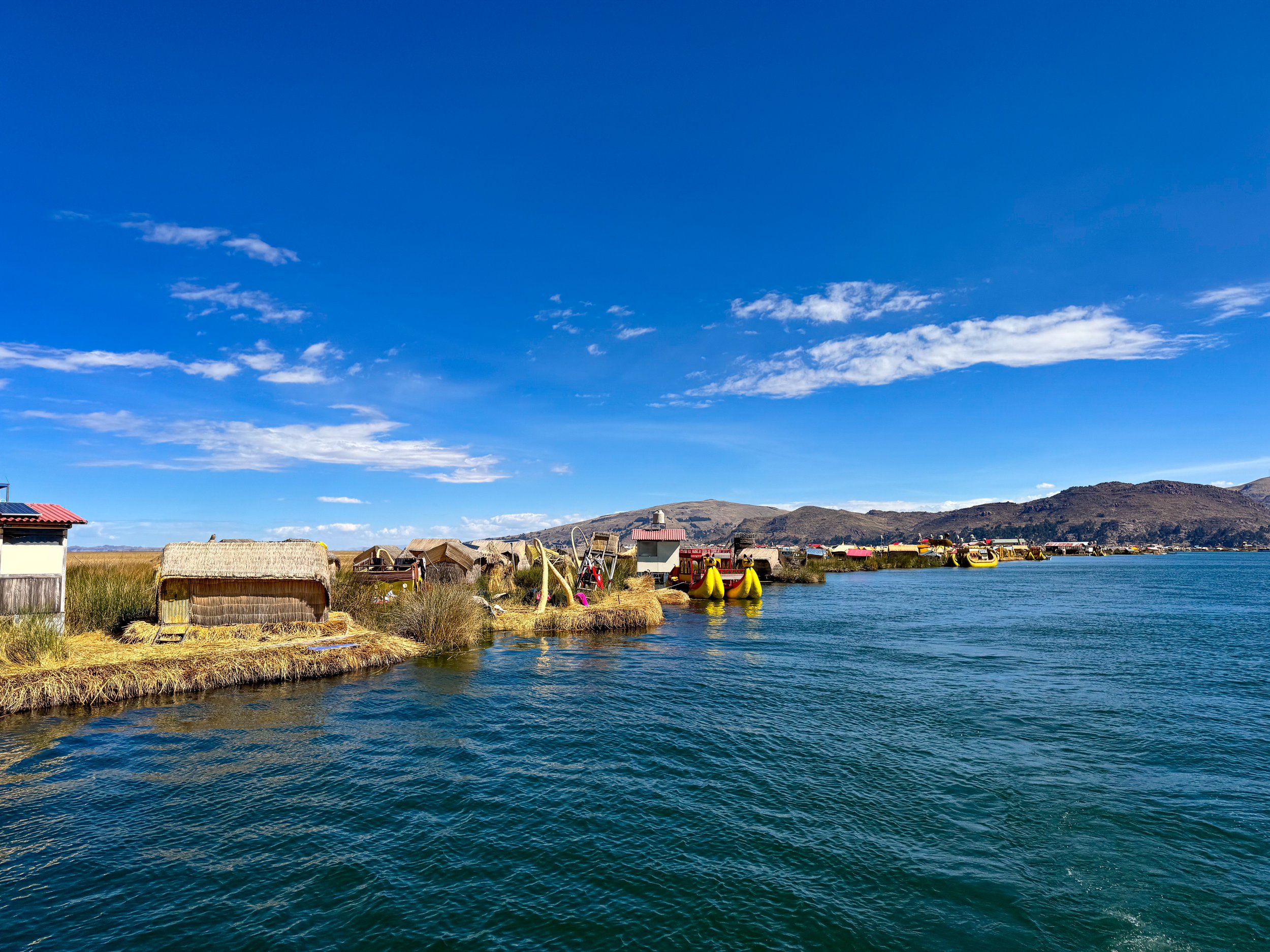
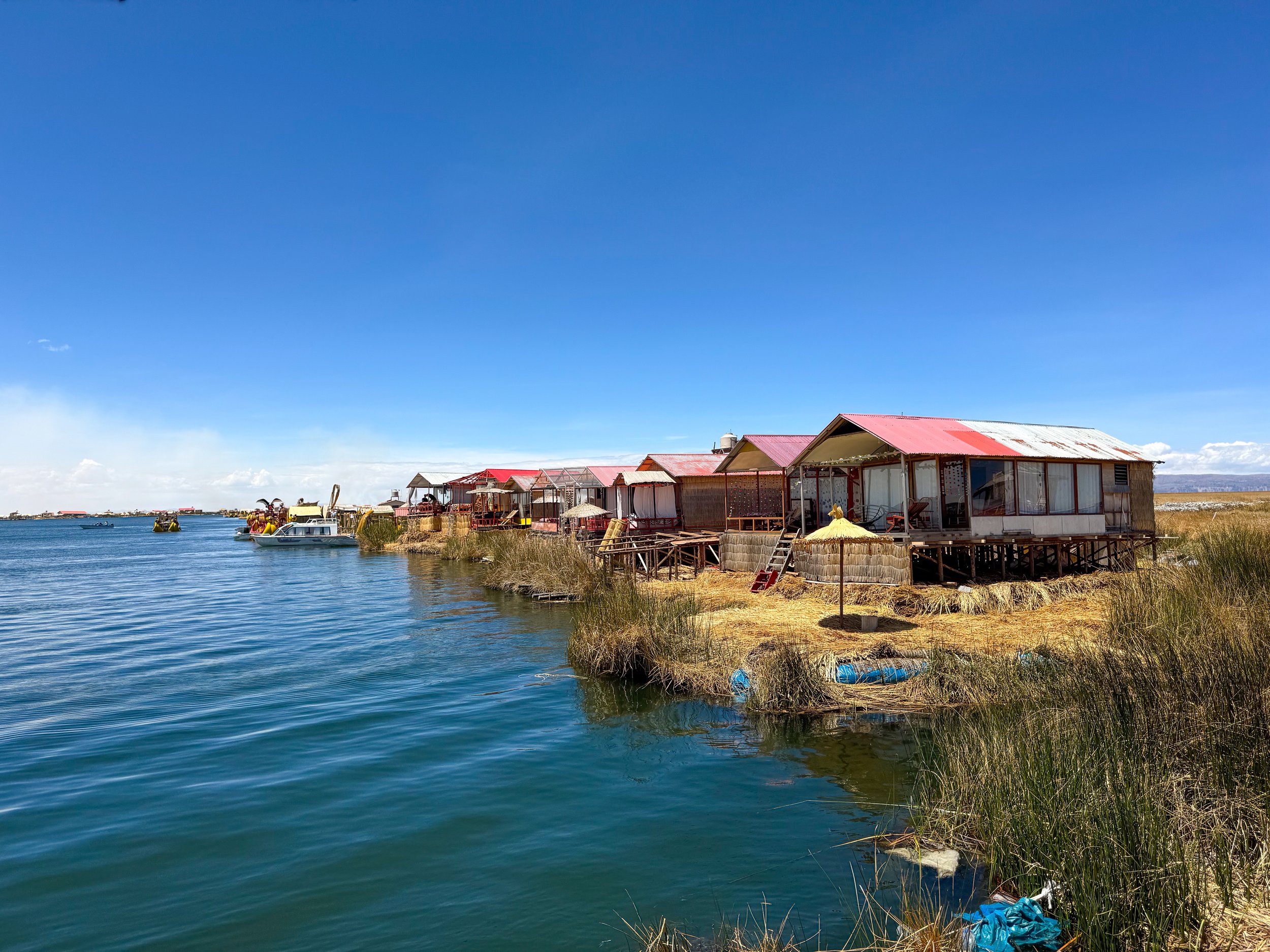
Touring the Uros Islands
Our host took us on a tour of the islands, a sunset boat ride, net fishing and even let us attempt to paddle the boat. He shared stories of his father and grandfather, being some of the best fishermen on the lake. The matriarch caught fish and cooked meals for us including pan fried trout from the lake and soup made from our fresh catch.
On our boat tour, we slowly passed nearly every island in the community, admiring the golden color from the thatched surfaces, the colorful textiles and unique styles of the boats. The islands are very welcoming of visitors, with home stays, small restaurants serving local cuisine and tiny shops. They have their own hospital, communal place of worship and elementary school.
Restaurant Titicaca
A popular lunch spot on the Uros Islands with traditional cuisine from Lake Titicaca. Trucha (trout) is the star of the menu. It’s prepared pan fried, deep fried or as ceviche, all with sides of Peruvian potatoes and rice. We dined in a pavilion, watching boats colorful boats pass by and enjoying the lake views.
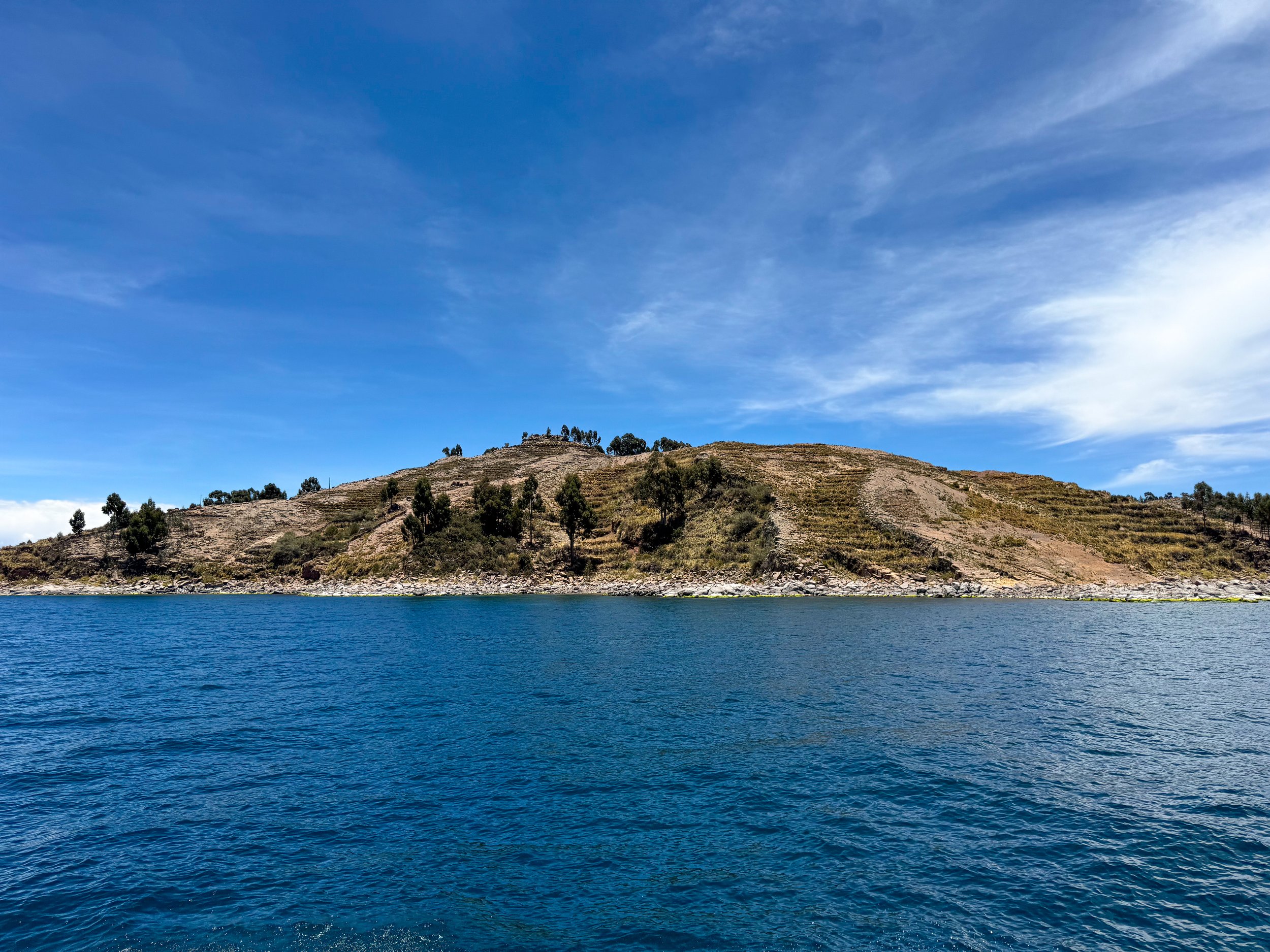
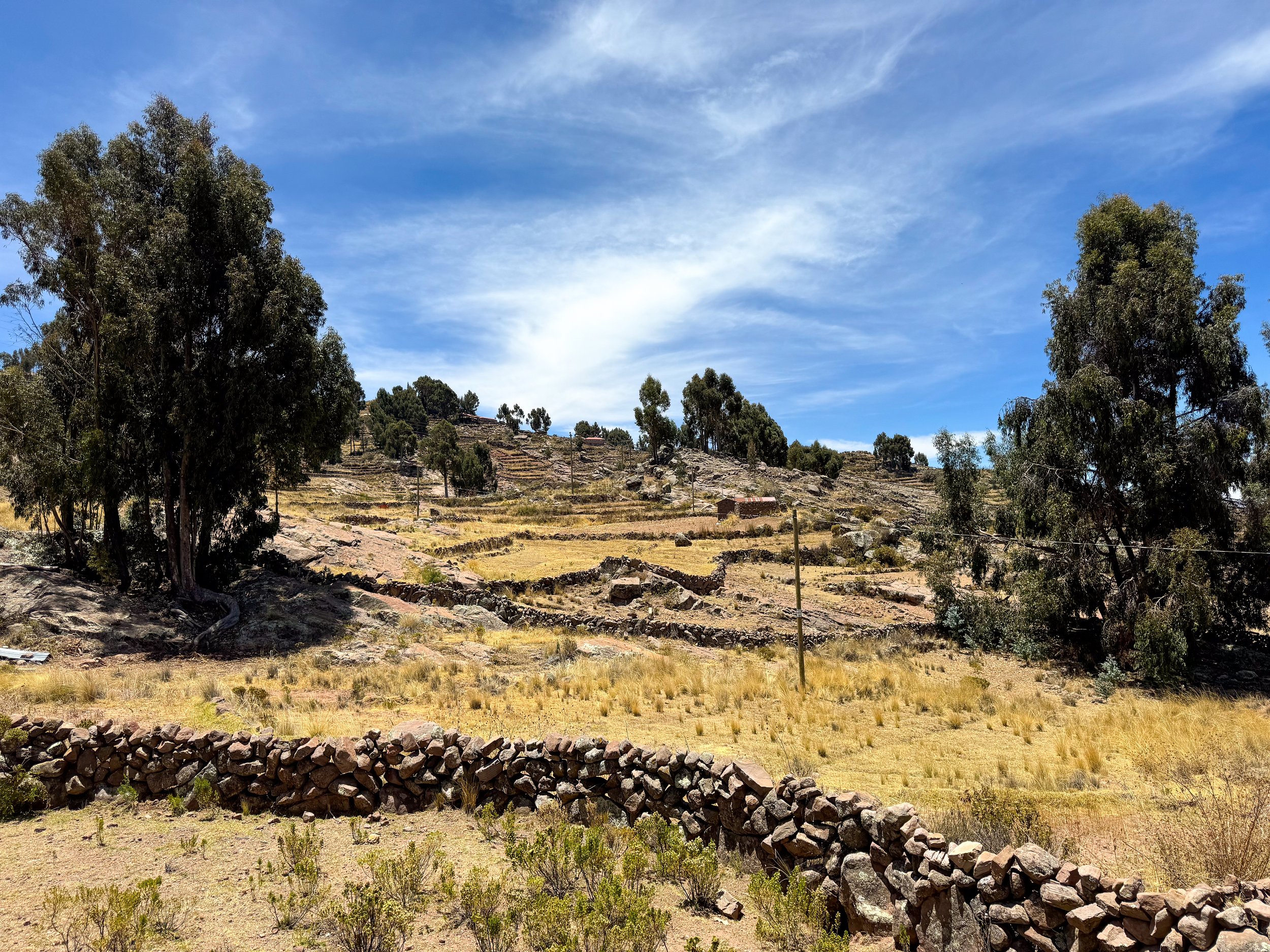
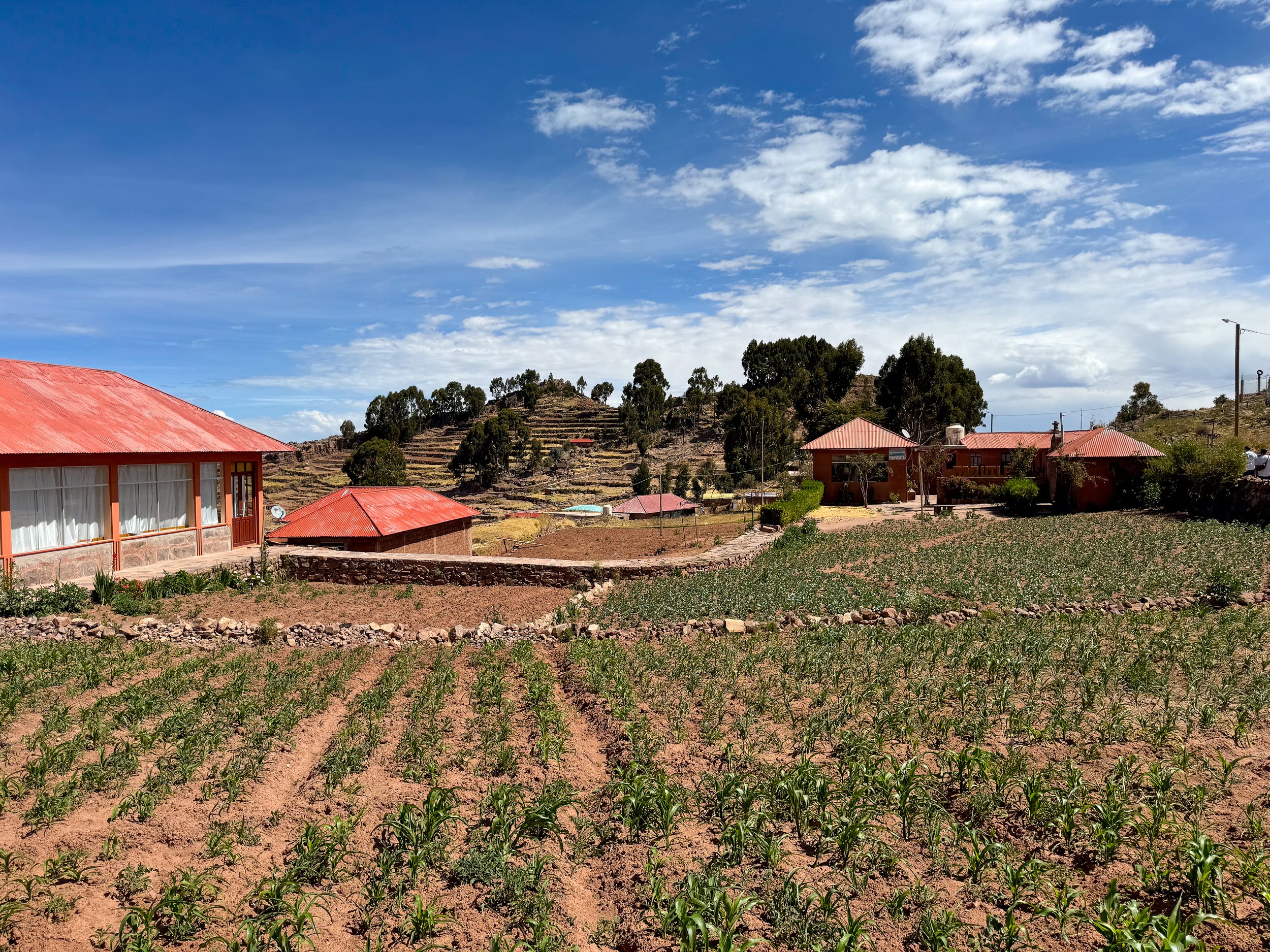
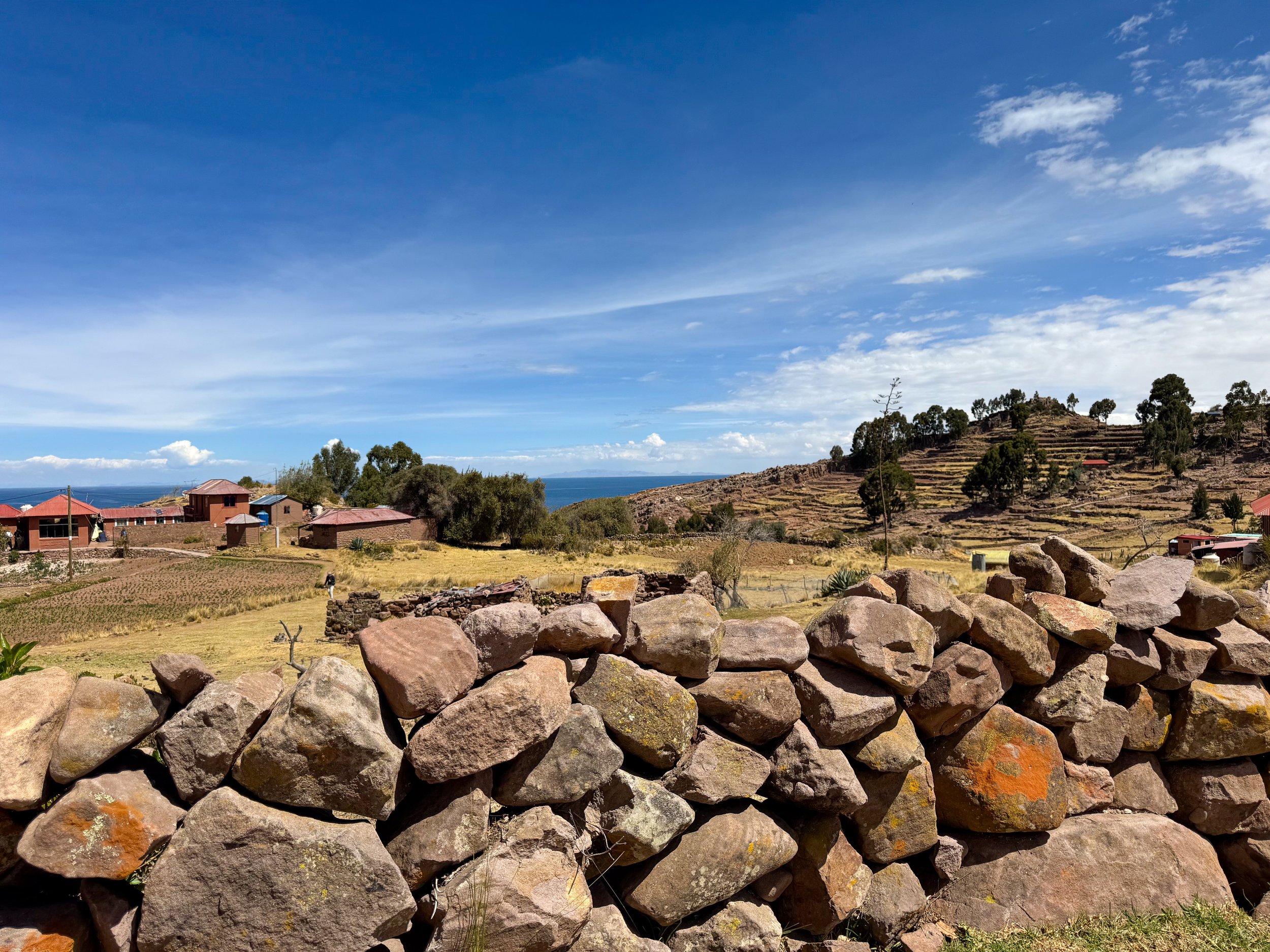
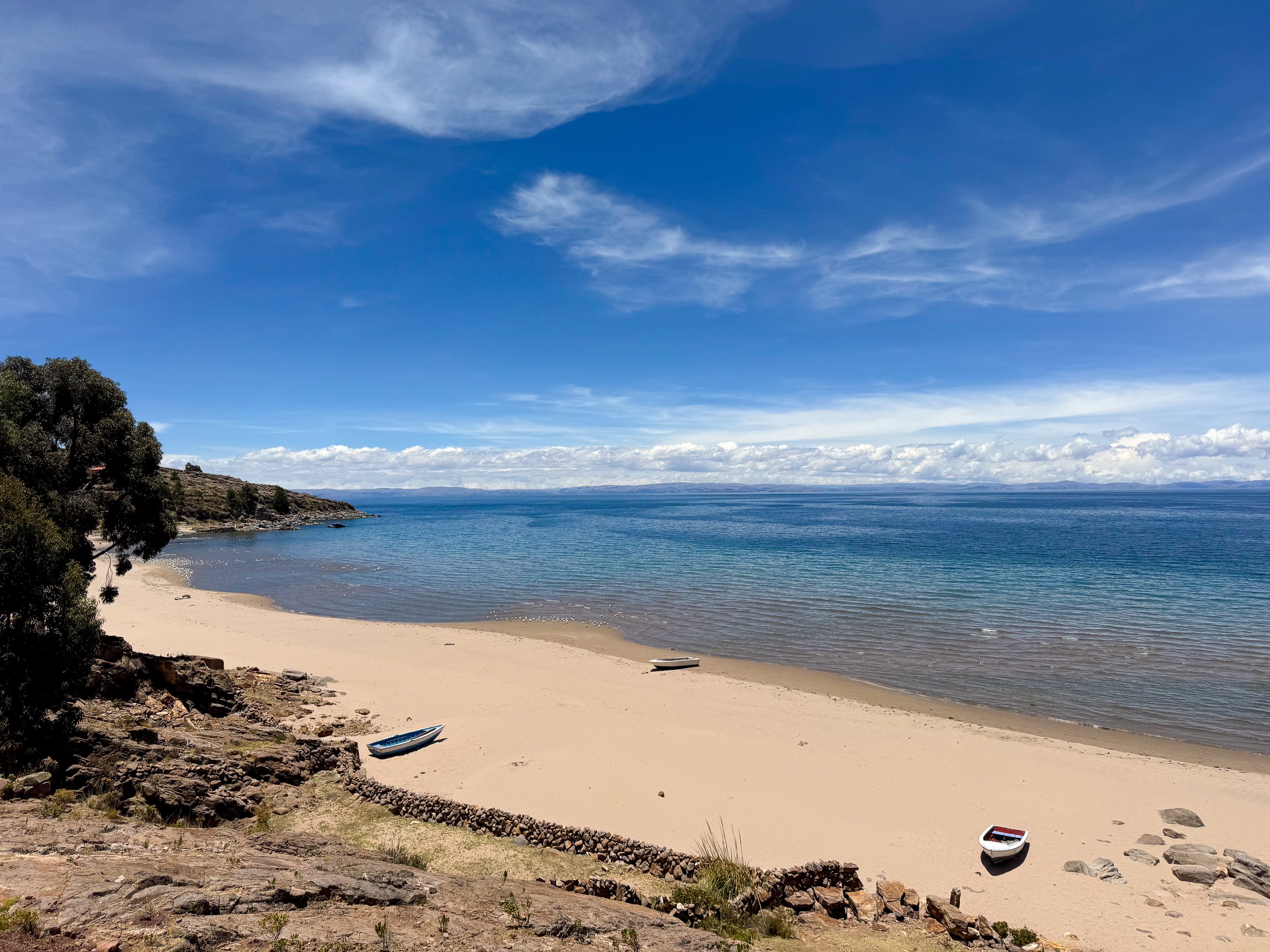
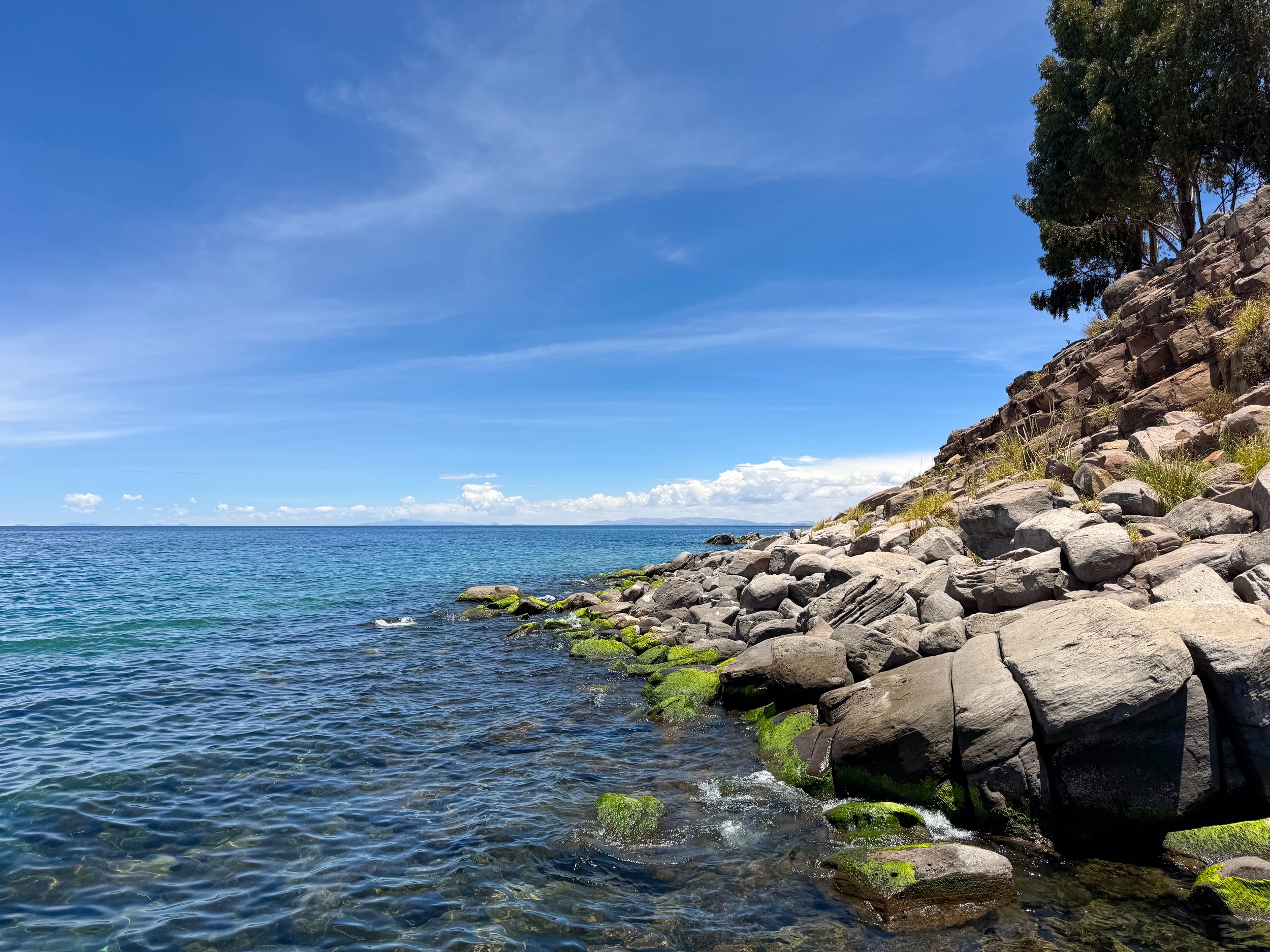
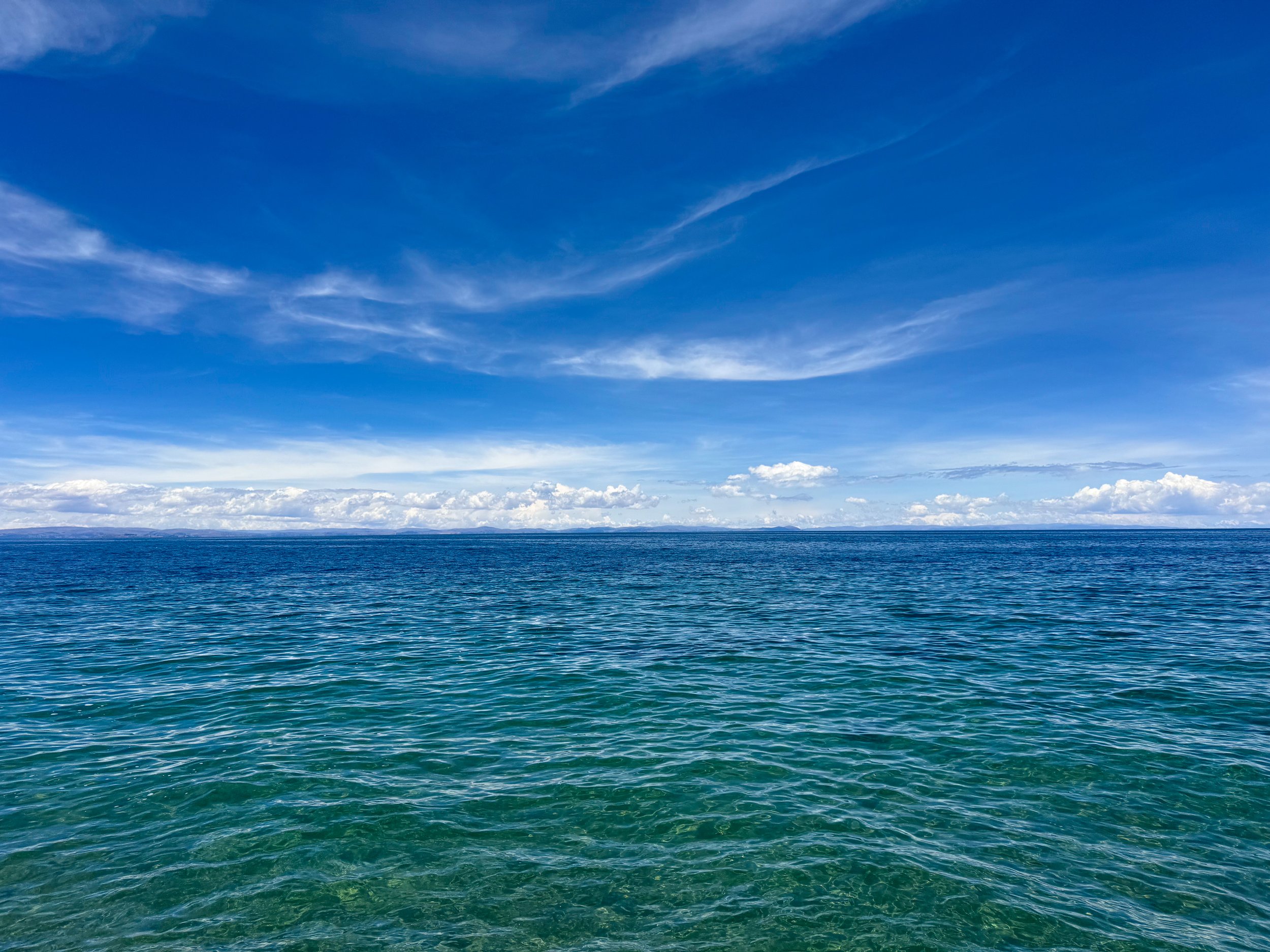
Isla Taquile, Peru
Taquile Island is an island on Lake Titicaca fully covered in agricultural terraces and internationally recognized for the cultural significance of their textiles. We took a half day tour to the island to explore its cuisine, textiles and landscape. Taquile Island is located 1 hour 30 minute by ferry from the Uros Islands with tours departing at 10am and retuning at 4pm.
The tour was simple, stopping on the island for a local lunch of pan fried trout, quinoa bread and quinoa soap. At the same time, we learned about the textiles and hats, primarily used to differentiate relationship status and mood. This was followed by a visit to an artisanal market with colorful and handmade woven items like hats, scarves, gloves, bracelets and bags.
Continuing, we walked along the island, overlooking agricultural terraces primarily used to grow potato, quinoa and corn. We passed walls of precariously stacked stones, pinkband yellow wildflowers used to make textile dyes and cliffs with views of the expansive lake.
Copacabana, Bolivia
Copacabana is a colorful Bolivian town located on the Eastern shores of Lake Titicaca. We spent an afternoon exploring the city, paddling around the lakefront and hiking to a mountaintop overlook.
While walking through town, women are seen dressed in traditional Andean attire selling fruits and veggies, friendly stray dogs run around and sleep in the streets, backpackers arrive and depart by bus regularly and cars receive blessings while being decorated with strings of flowers and bouquets.
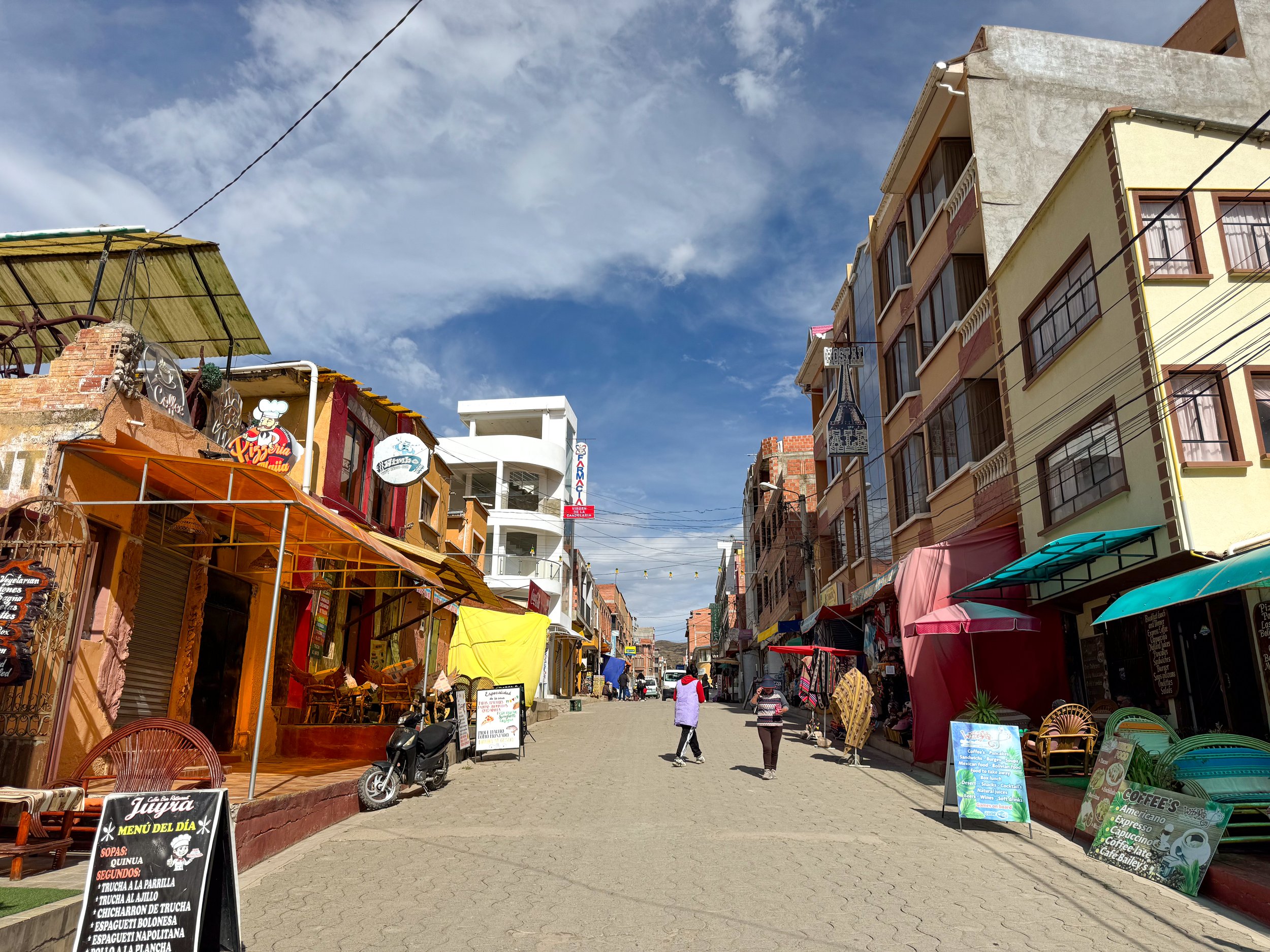
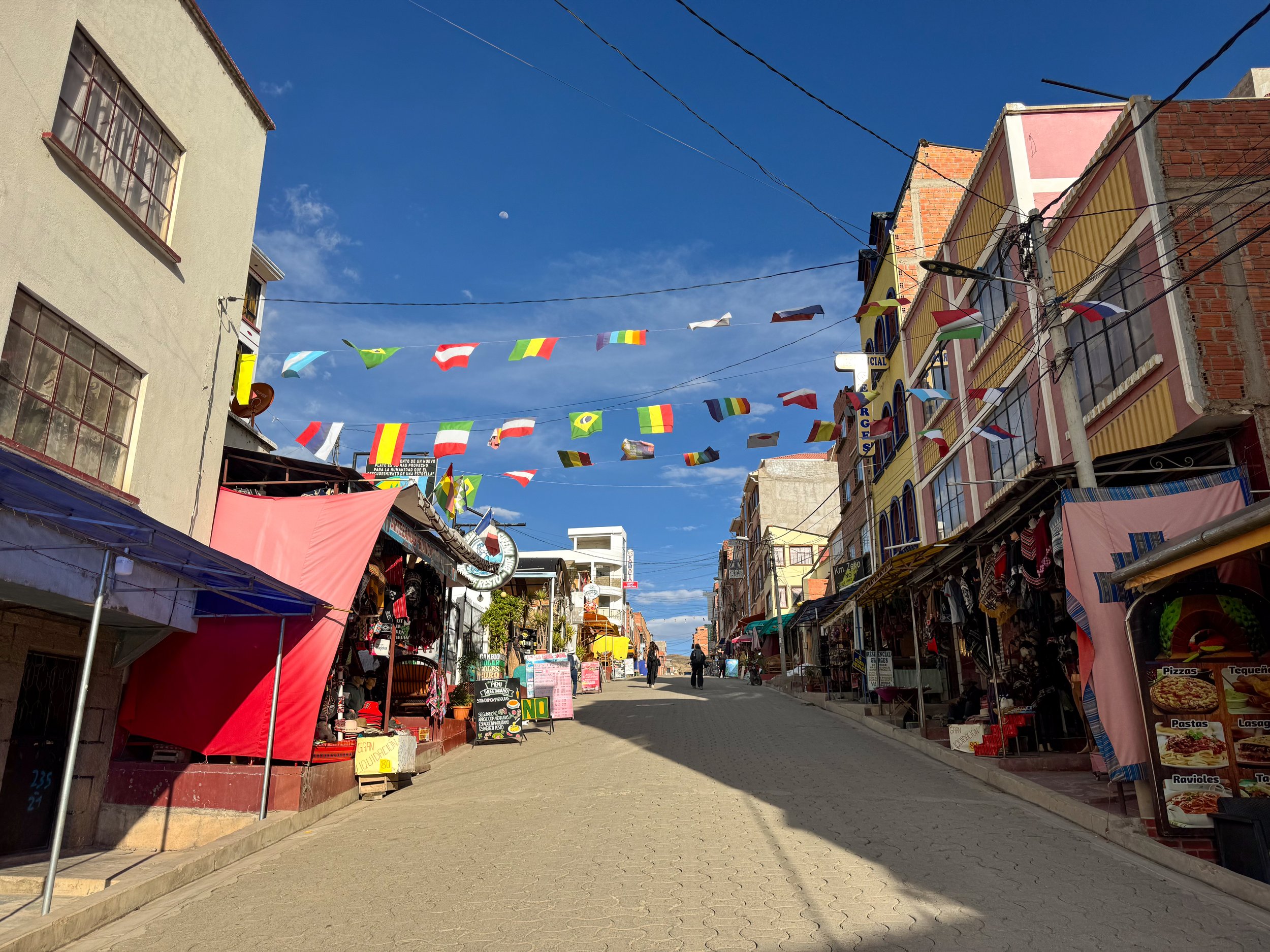
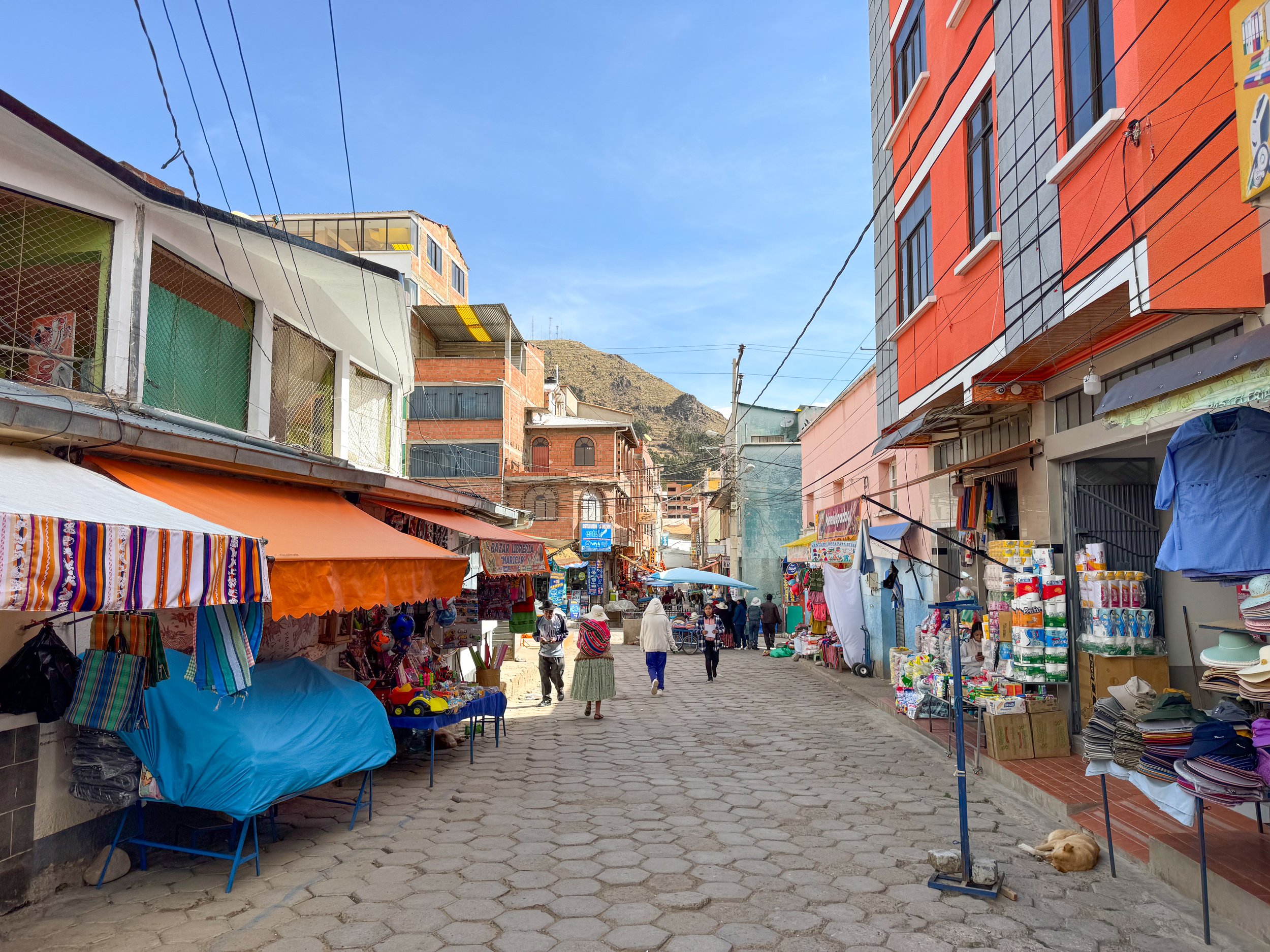
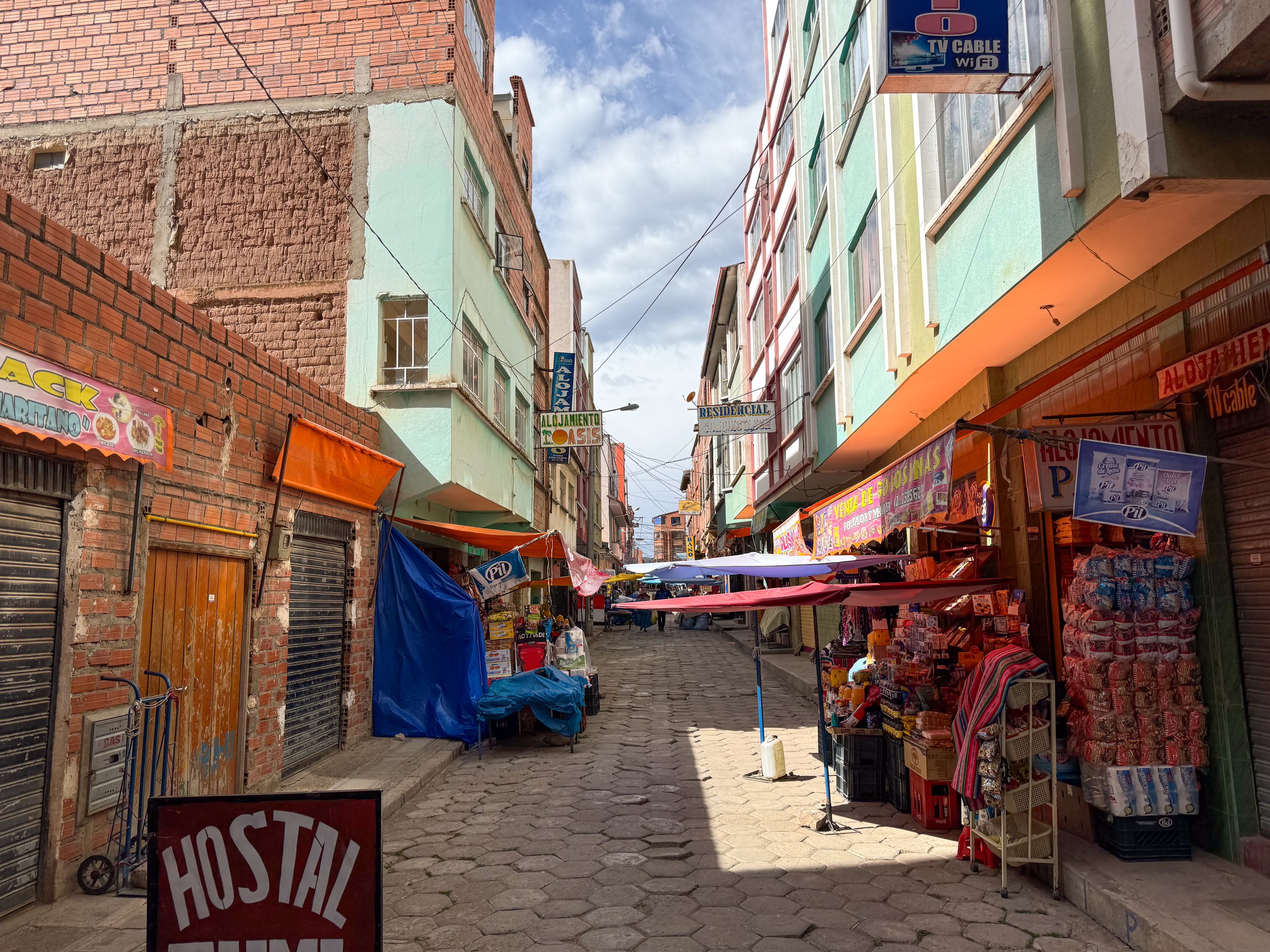
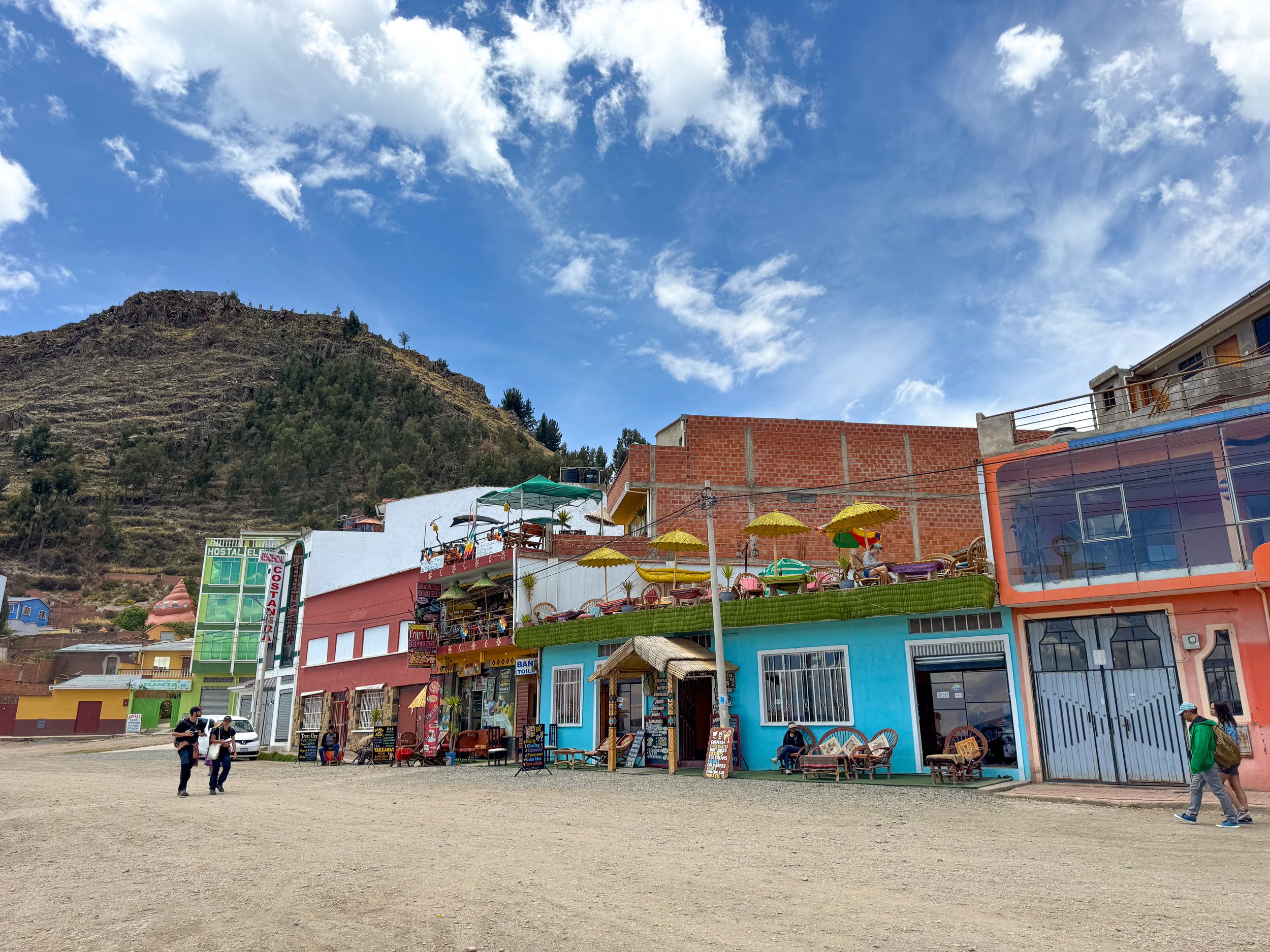
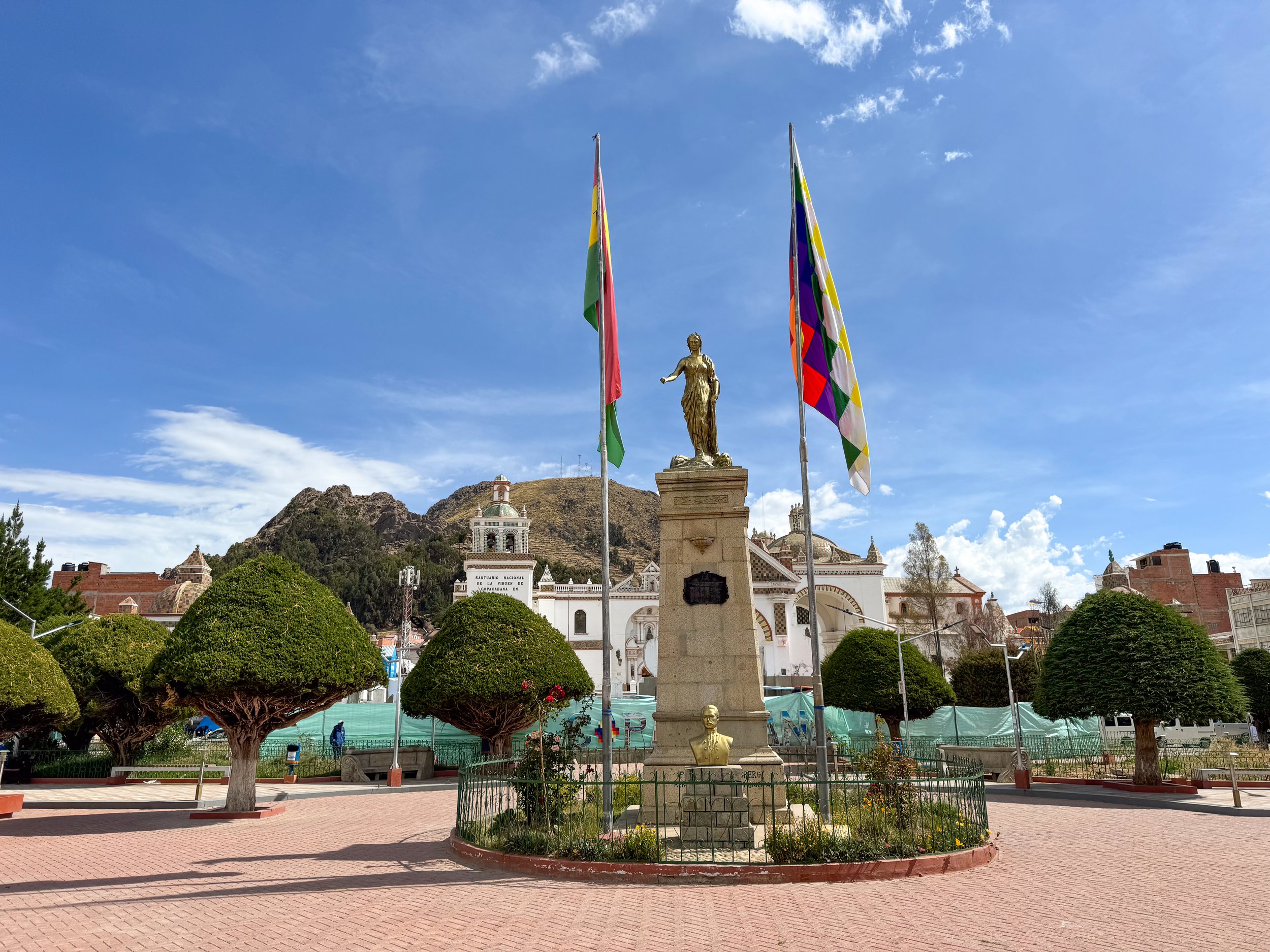
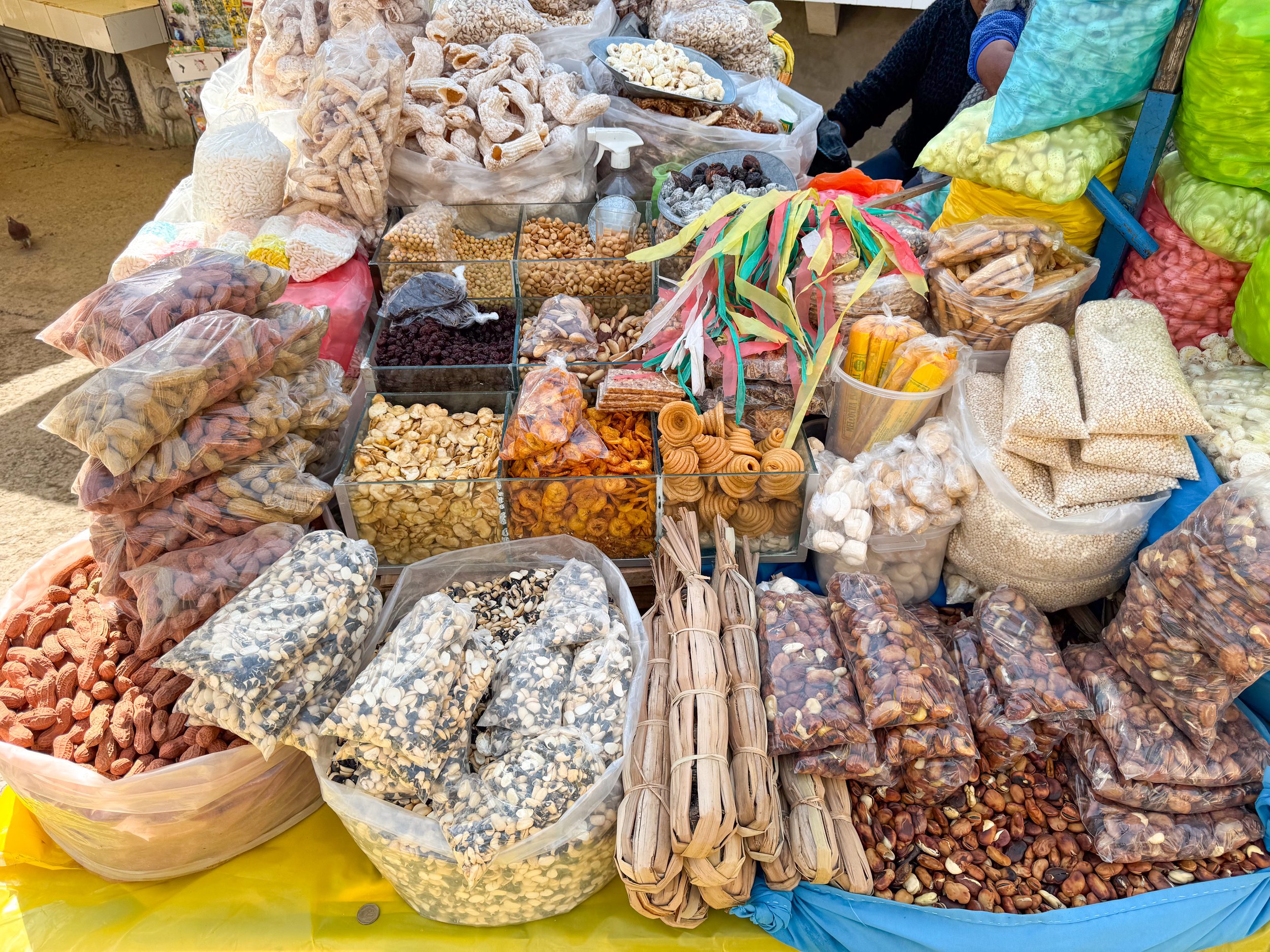
Around Town
Av. Costanera. A dirt road parallel to the city harbor with local food kiosks, hotels with lake front views, swan style paddle boats and companies selling tours to the nearby islands.
Av 6 de Augusto. The main road through Copacabana with hostels, cafes, bars, restaurants, money exchanges, tour operators and souvenir shops. Many restaurants offer 2x1 happy hours and have simple menus consisting of lake trout, pizza and pasta.
Al Paseo de Las Pasancallas. A market street with local vendors selling dry goods like peanuts, roasted beans, quinoa, puffed grains, popcorn and candies.
Copacabana Square / Plaza 2 de Febrero. The central town square with a red brick plaza and well manicured trees in front of the Basílica de la Virgen de Copacabana.
Basilica of Our Lady of Copacabana. A historic cathedral with a white painted exterior accented with Portuguese tiled moldings and bell towers.
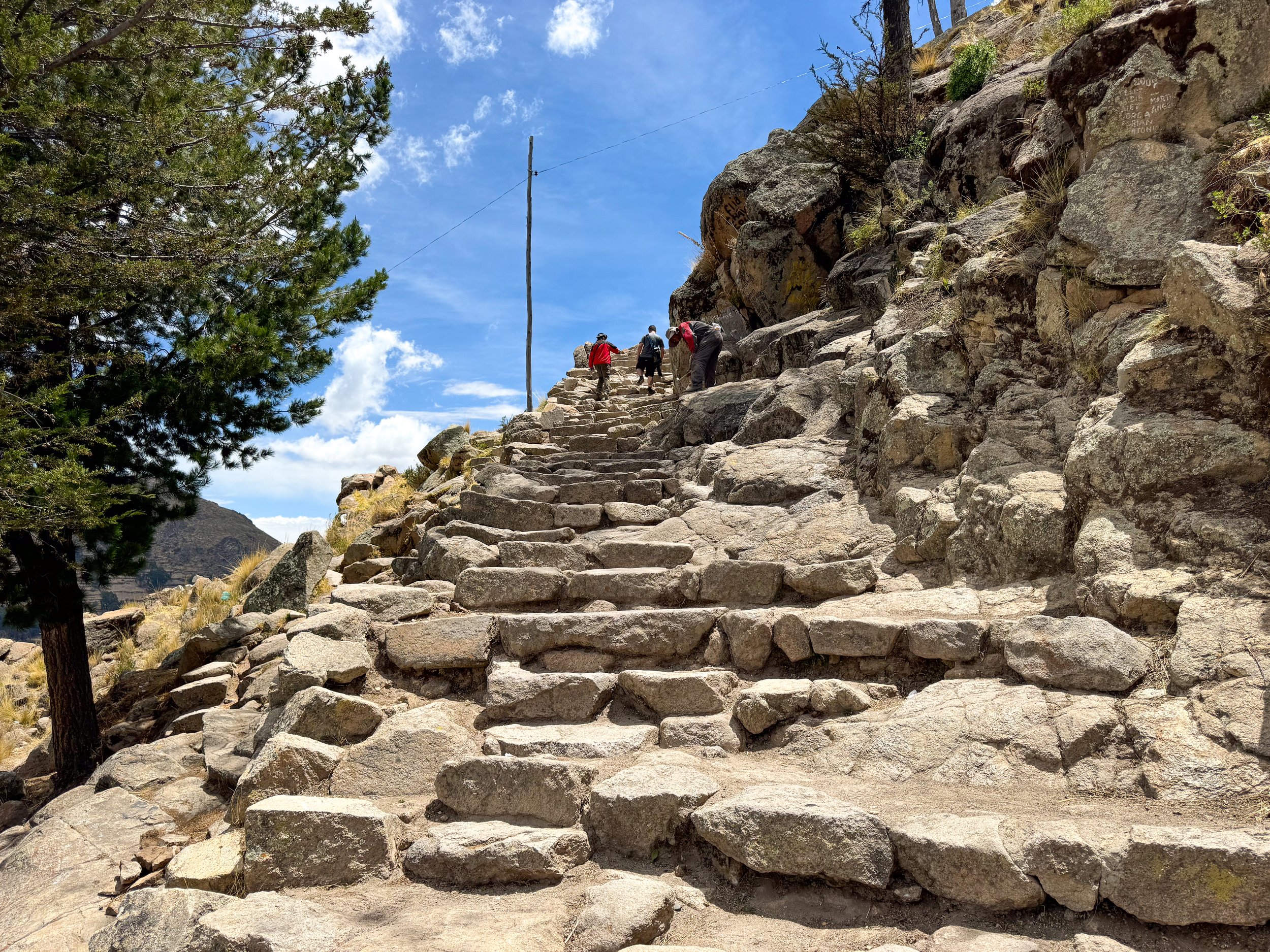
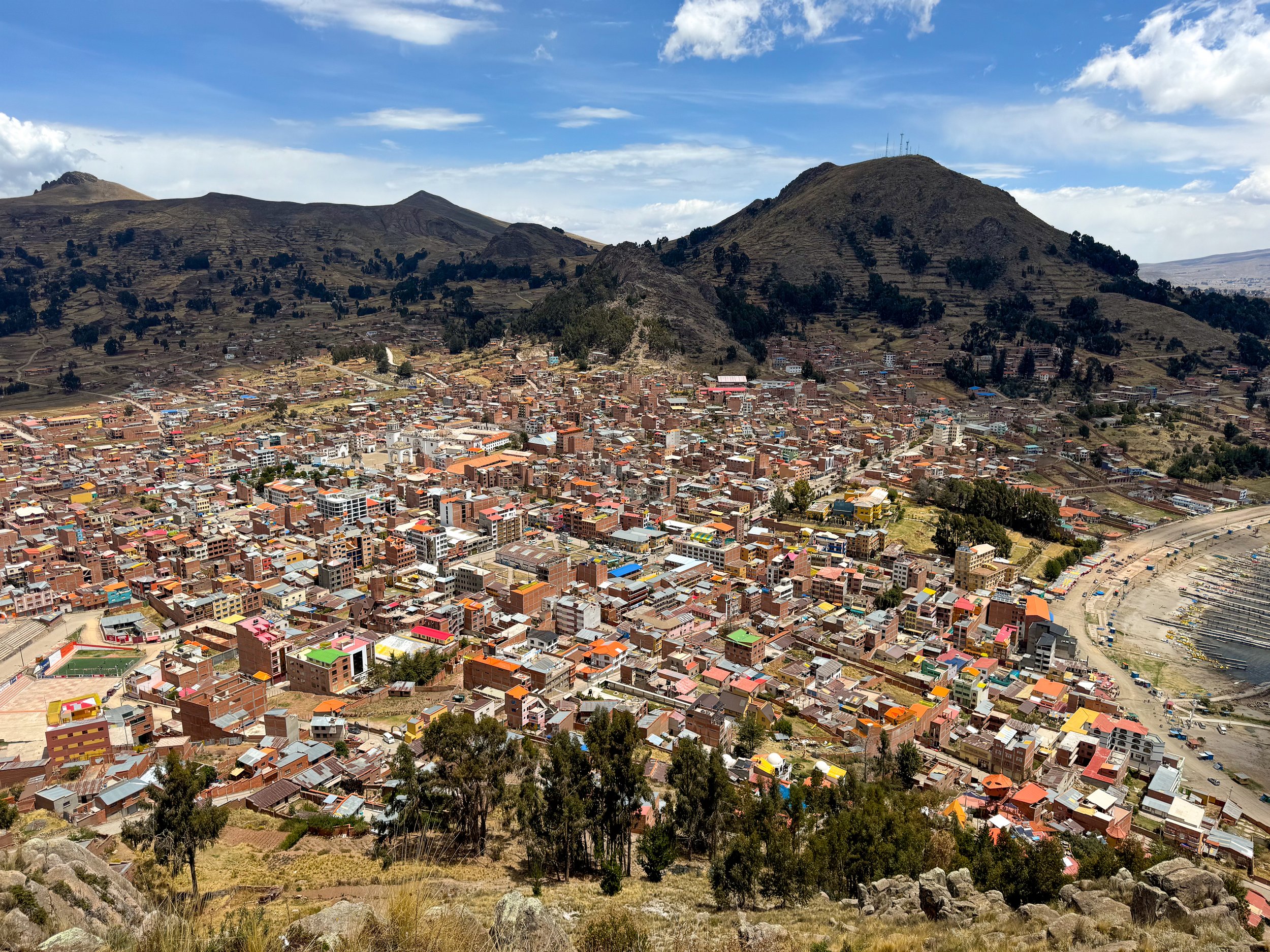
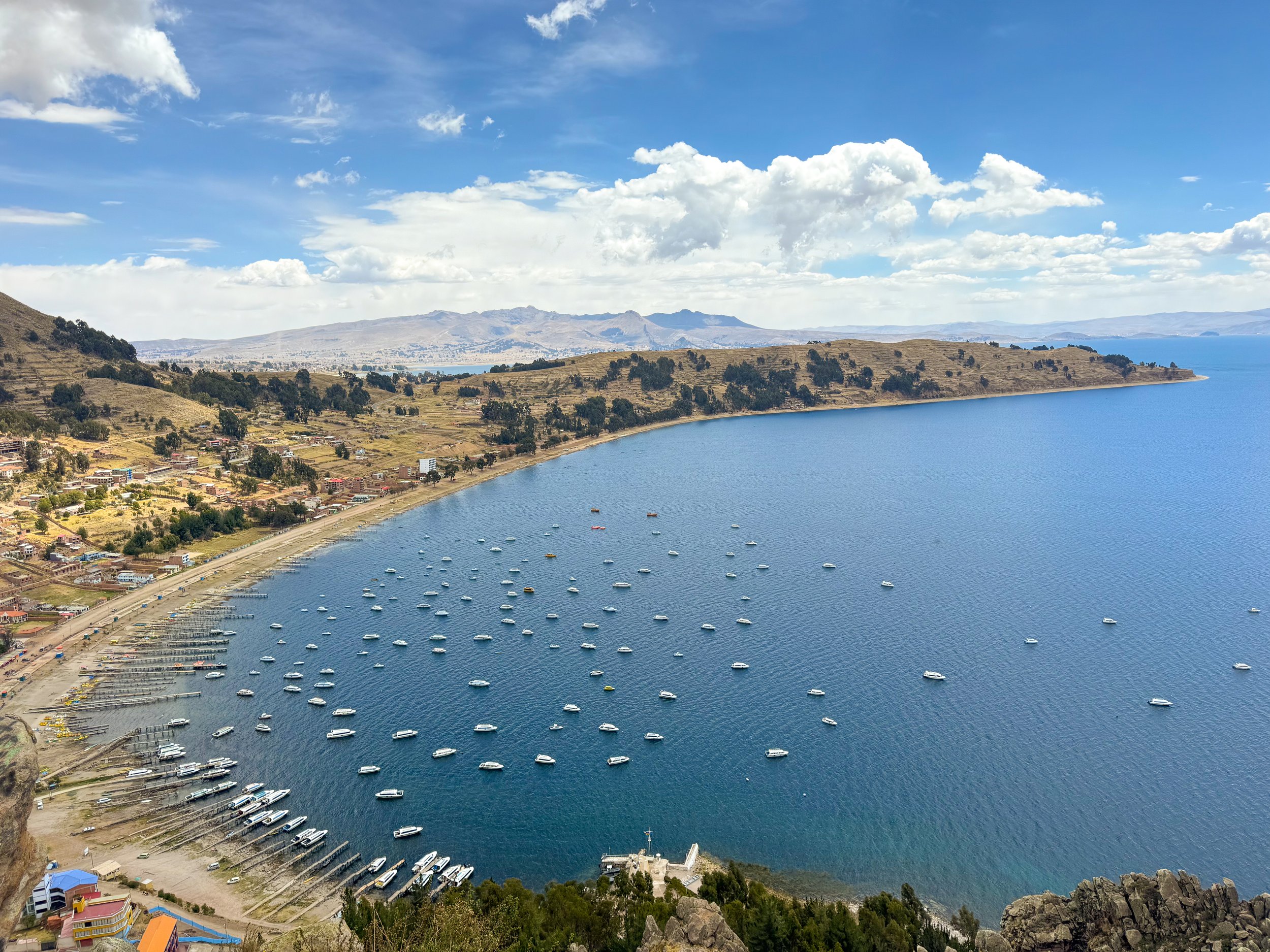
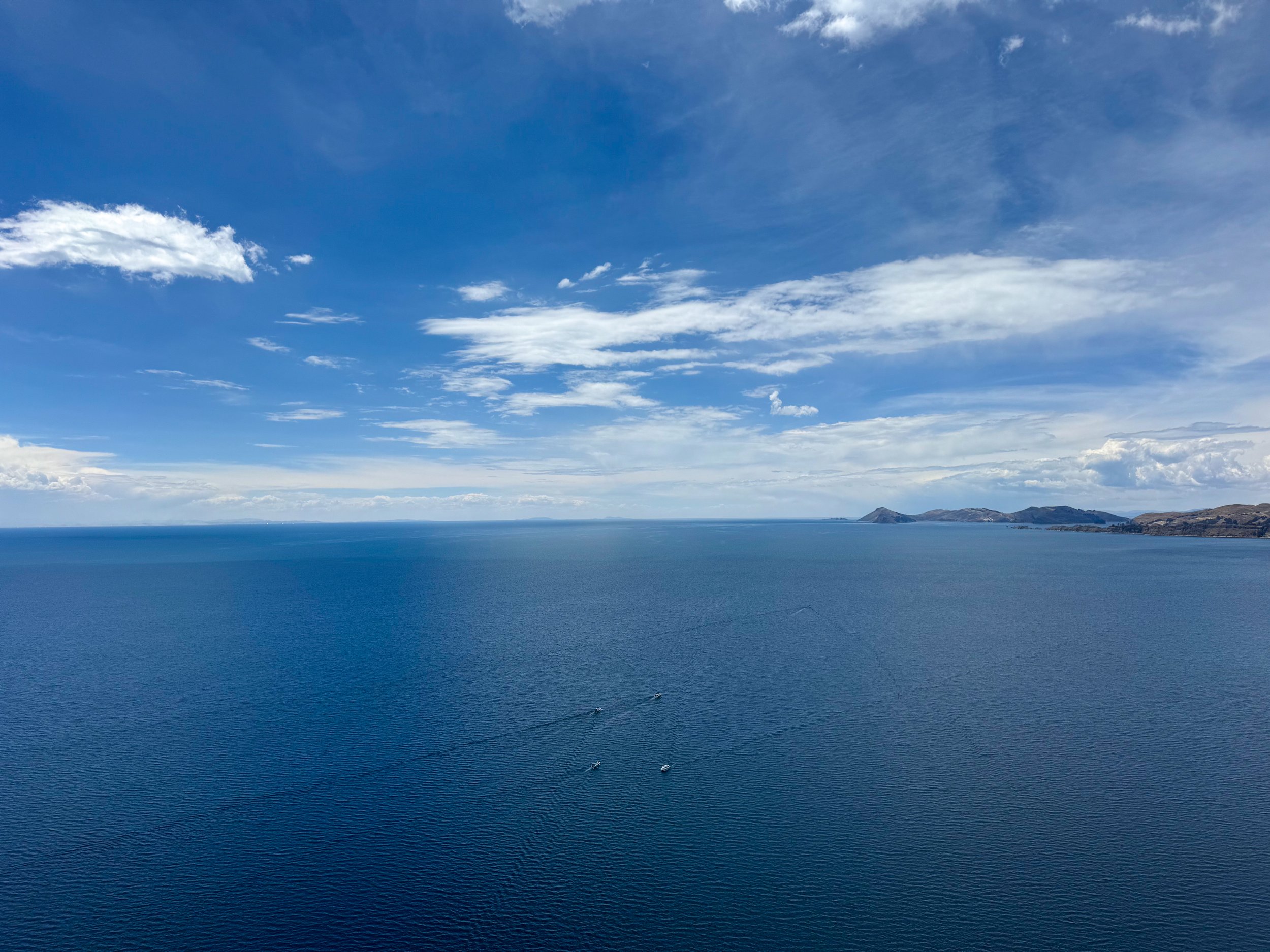
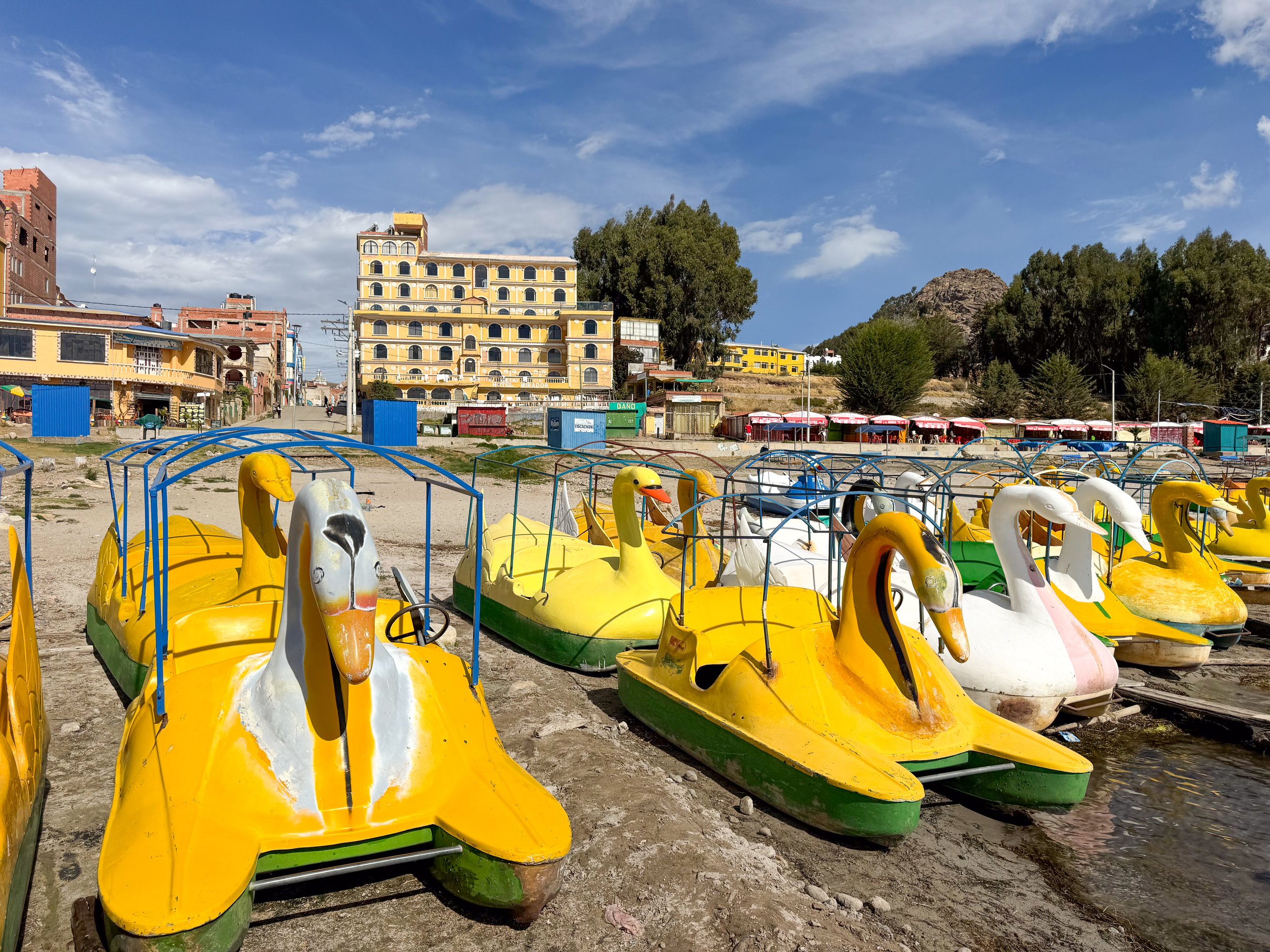
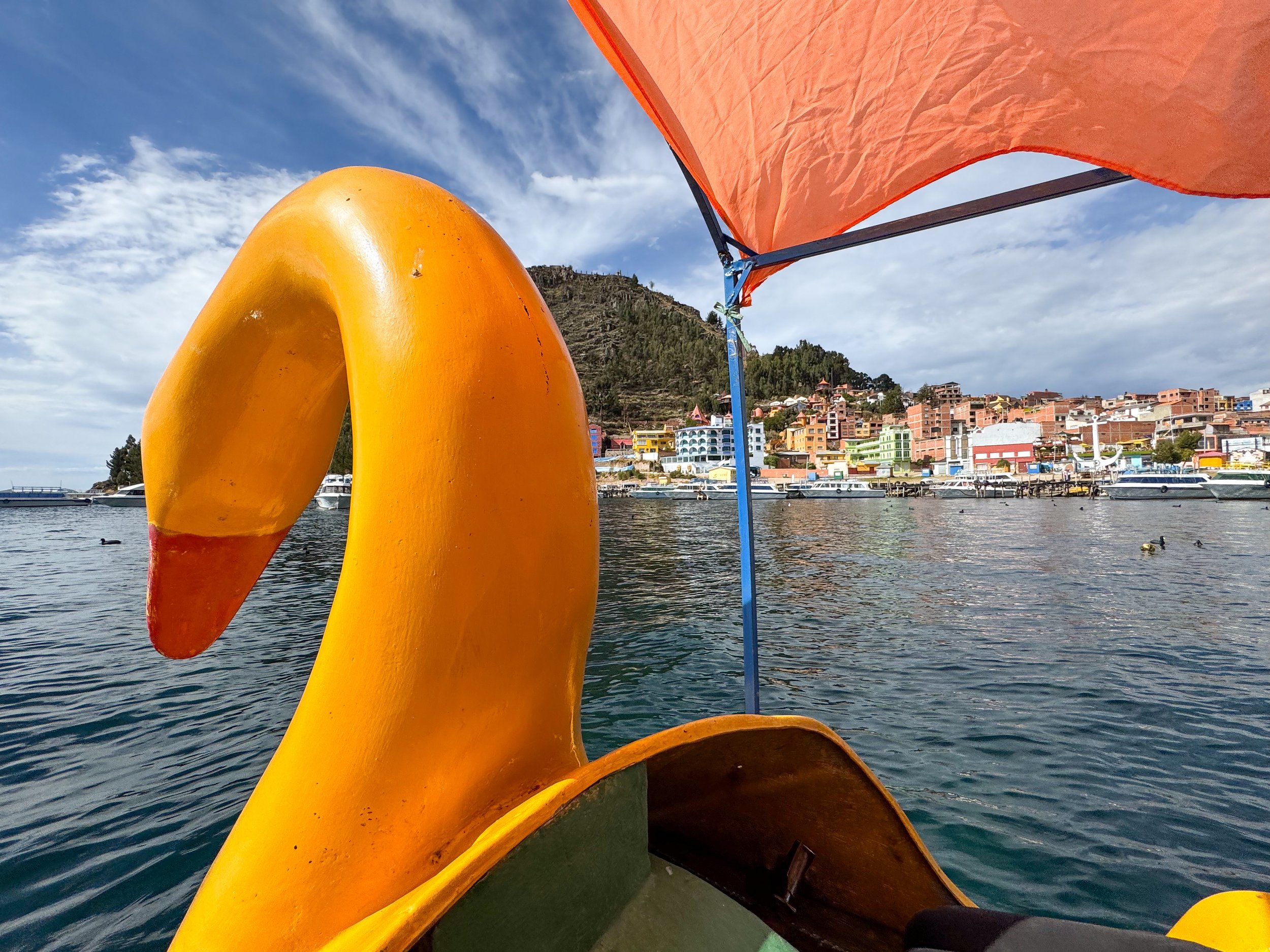
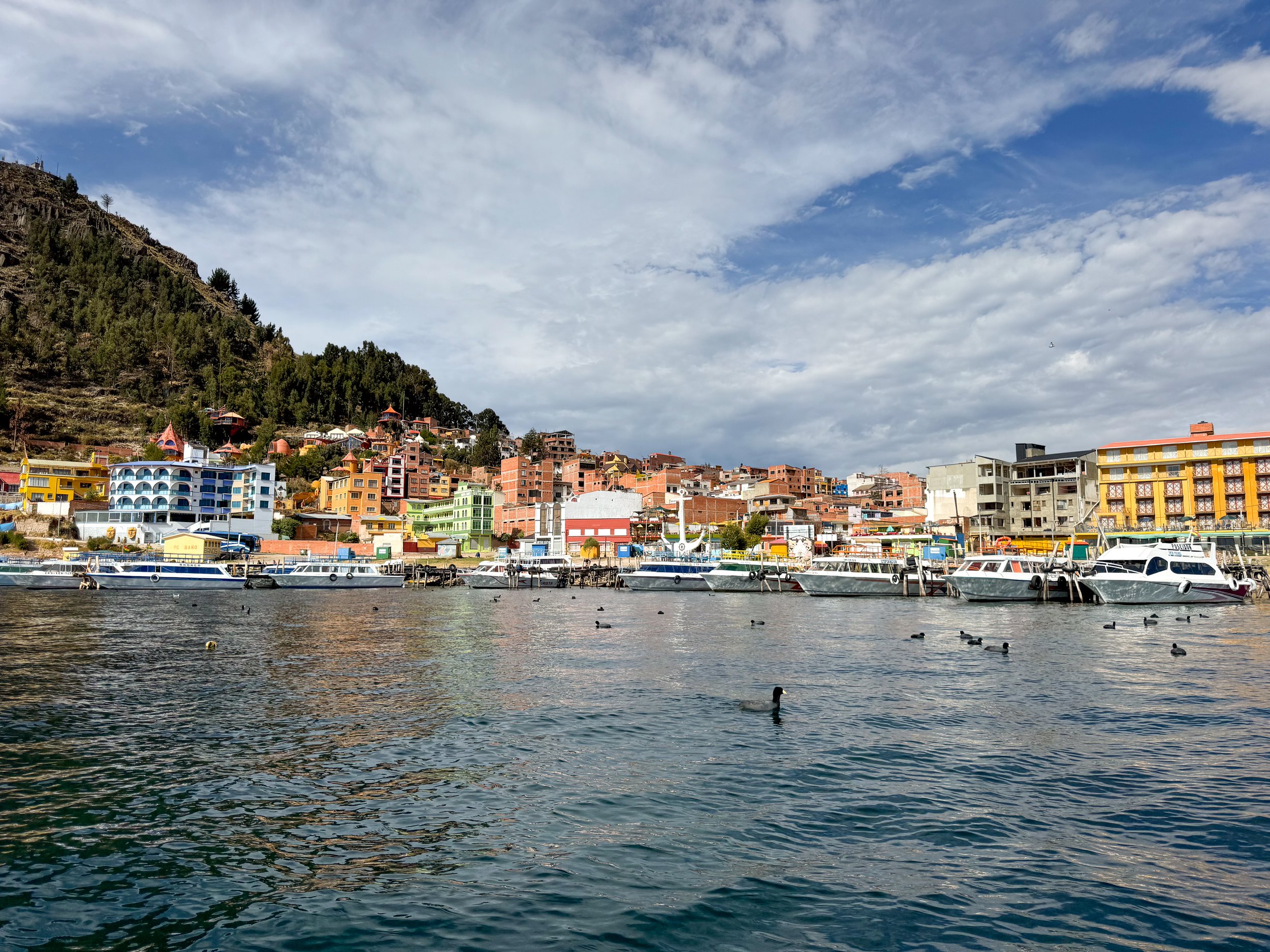
Things to Do
Hike Cerro El Calvario. A steep hike up rocky steps to a mountaintop lookout with views of Copacabana. From the summit, the clay tiled walls, colorful tin roofs and vibrantly painted facades of buildings of the city quickly blur into the countryside. Along shore, fishing boats and tour ships are moored along throughout the crescent shaped harbor while the expansive blue lake stretches far across the horizon.
Rent A Paddle Boat. Rent a yellow duck paddle boat and float around the harbor for half an hour, looking back at the colorful city and mountains as the gentle waves rock the boat from side to side.
Where to Eat, Drink & Sleep
Hostal La Cúpula. A hotel on the hill overlooking Copacabana with dome shaped buildings and flowering gardens. We came here for lunch at their restaurant, El Condor & The Eagle Cafe, a relaxing spot with a small dining room and outdoor patio with views of the city and harbor. The menu offers sandwiches and salads.
Hostal Las Olas. A one of a kind hotel with organic shell shaped architecture, tree houses, curved walls and colored glass windows on the hill overlooking Copacabana. Though we didn’t stay here, we stopped to admire the property.
Winay Marka. A restaurant and bar with a rooftop overlooking Lake Titicaca and the harbor. A relaxing atmosphere to enjoy a cocktail with Reggae vibes and natural decor like wicker furniture, Bolivian textile cushions and totora umbrellas.
Nimbo Cafe Restaurant. A family run restaurant along Av 6 de Augusto with happy hour cocktails and a large range of pizzas.
Good to Know
The Climate. The climate is cool year round with slightly warmer temperatures during the day and freezing temperatures at night. It’s dry most of the year except for the rainy season from January to March.
Getting Here. The best way to reach the Uros Islands is by traveling to city of Puno, from either Cusco or Arequipa by bus. The best way to reach Copacabana is from Puno or La Paz by bus. We took the Peru Hop bus on our journey around Lake Titicaca.
For Next Time…
Since we only spent a day exploring the city in route to La Paz, we had little time to visit the nearby Incan Islands.
Isla del Sol. A sacred island on Lake Titicaca with dozens of Incan temple ruins, a terraced landscape and numerous home stays. The Incan’s believed the sun god originated from here.
Isla del Luna. A small island with a terraced landscape and the ruins of a temple.
Rio de Janeiro
Rio de Janeiro is a vibrant and magical Brazilian city known for its energetic atmosphere, famed white sand beaches, jungelous hiking trails, breathtaking landscapes, sprawling favelas and all night samba parties.
A Week in Rio
Rio de Janeiro is a vibrant and magical Brazilian city known for its energetic atmosphere, famed white sand beaches, jungelous hiking trails, breathtaking landscapes, sprawling favelas and all night samba parties. We spent a week in Rio, explored the city by neighborhood, getting a feeling for each one’s character, sights and beaches.
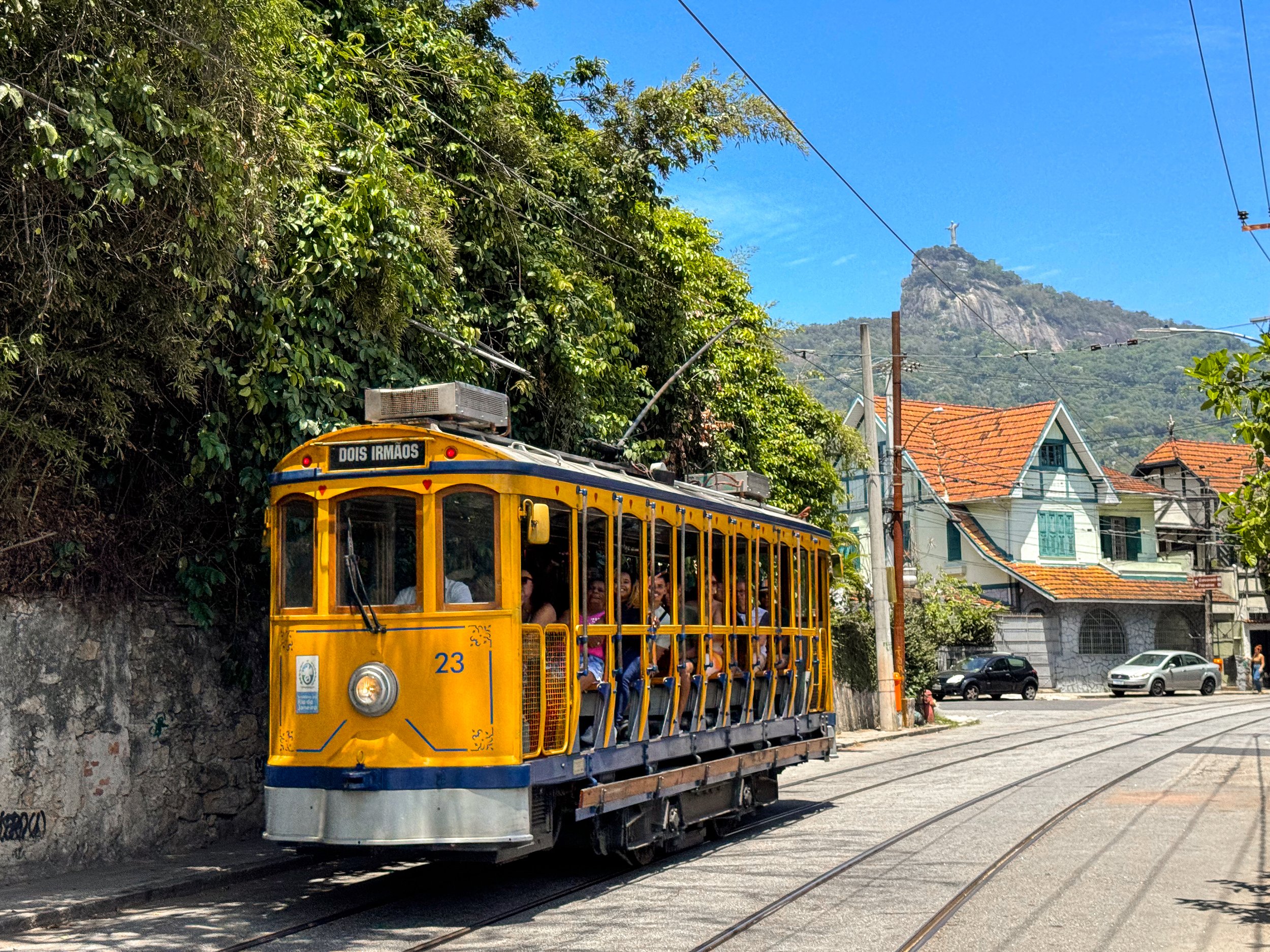
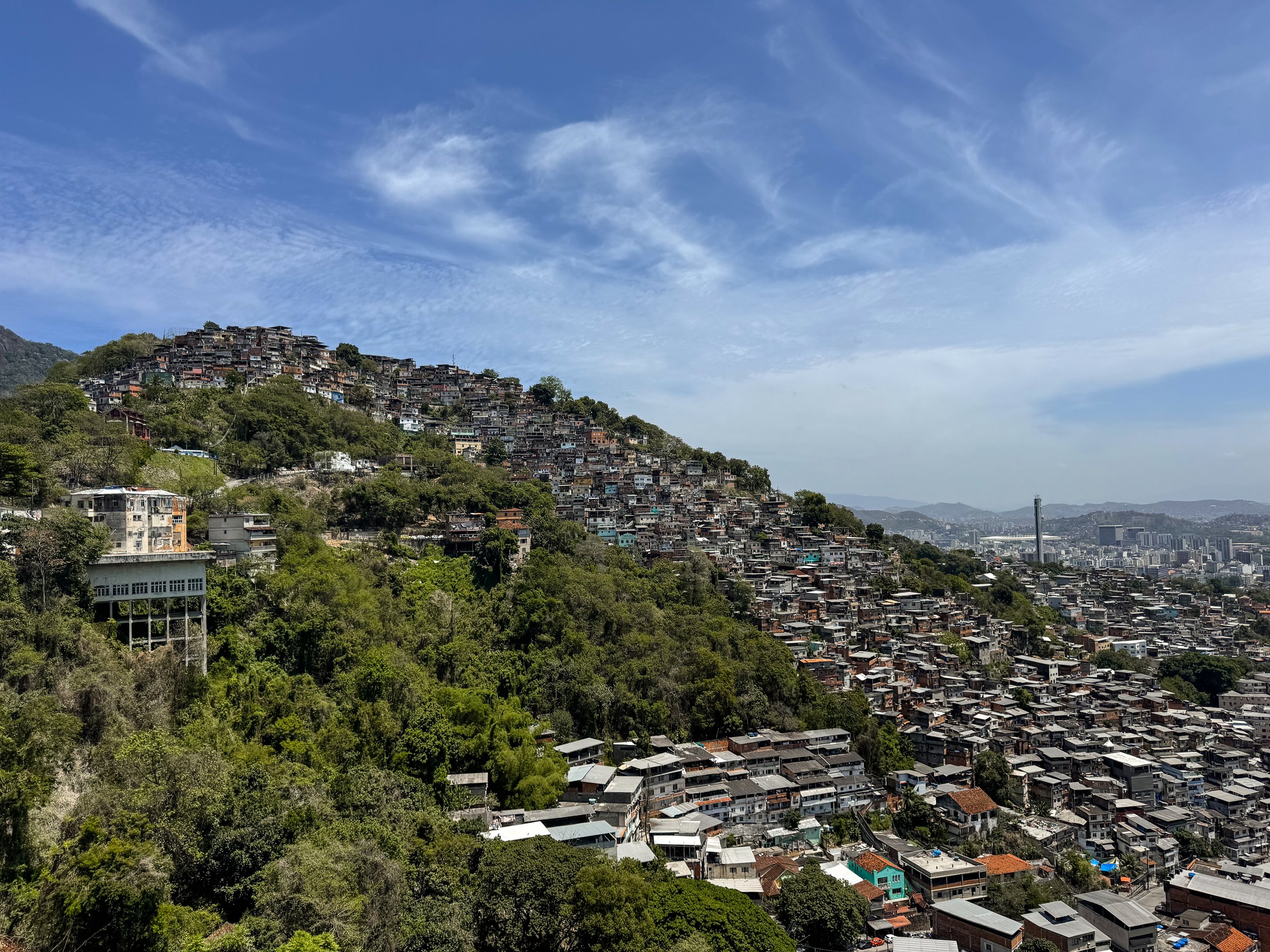
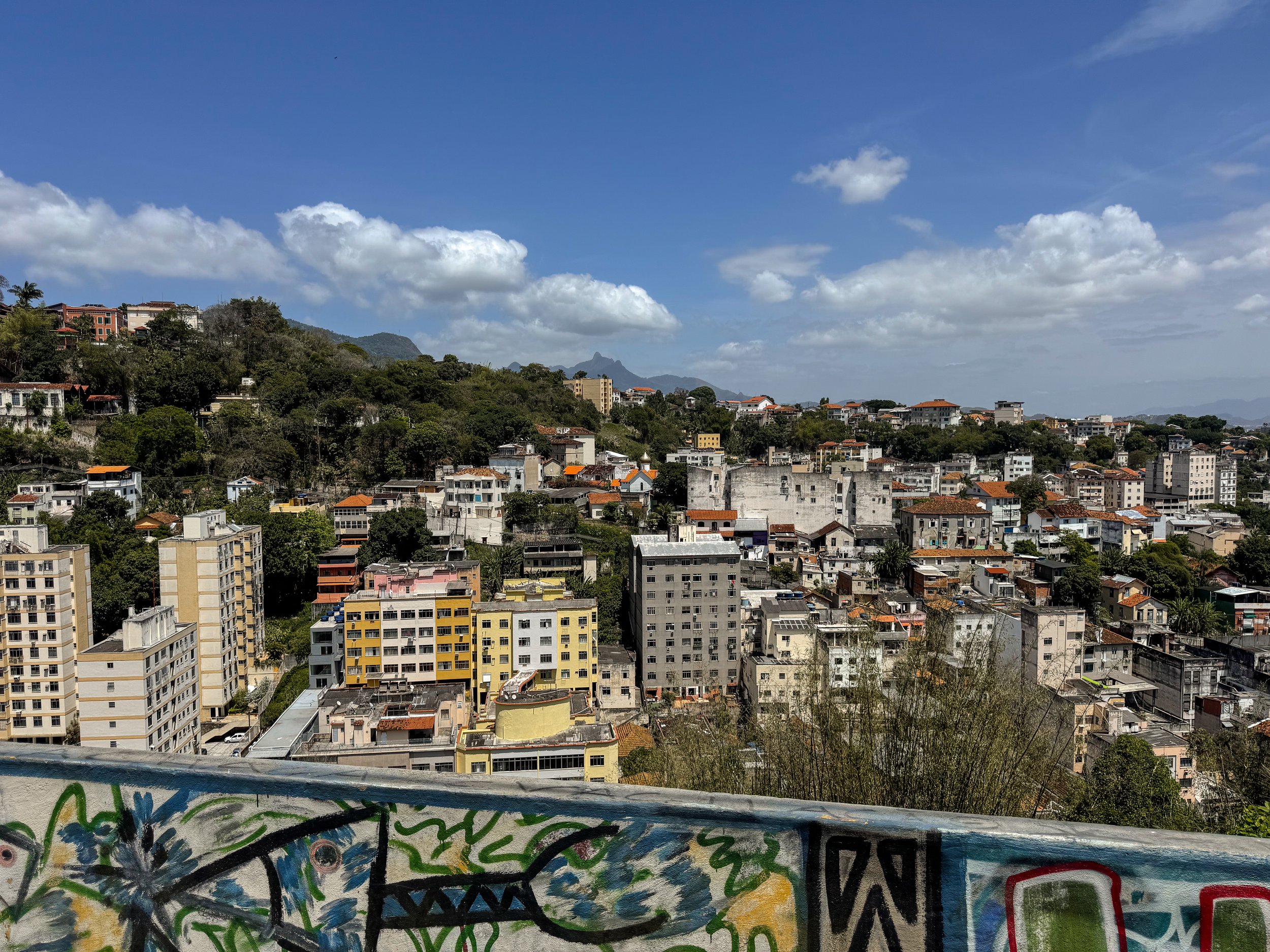
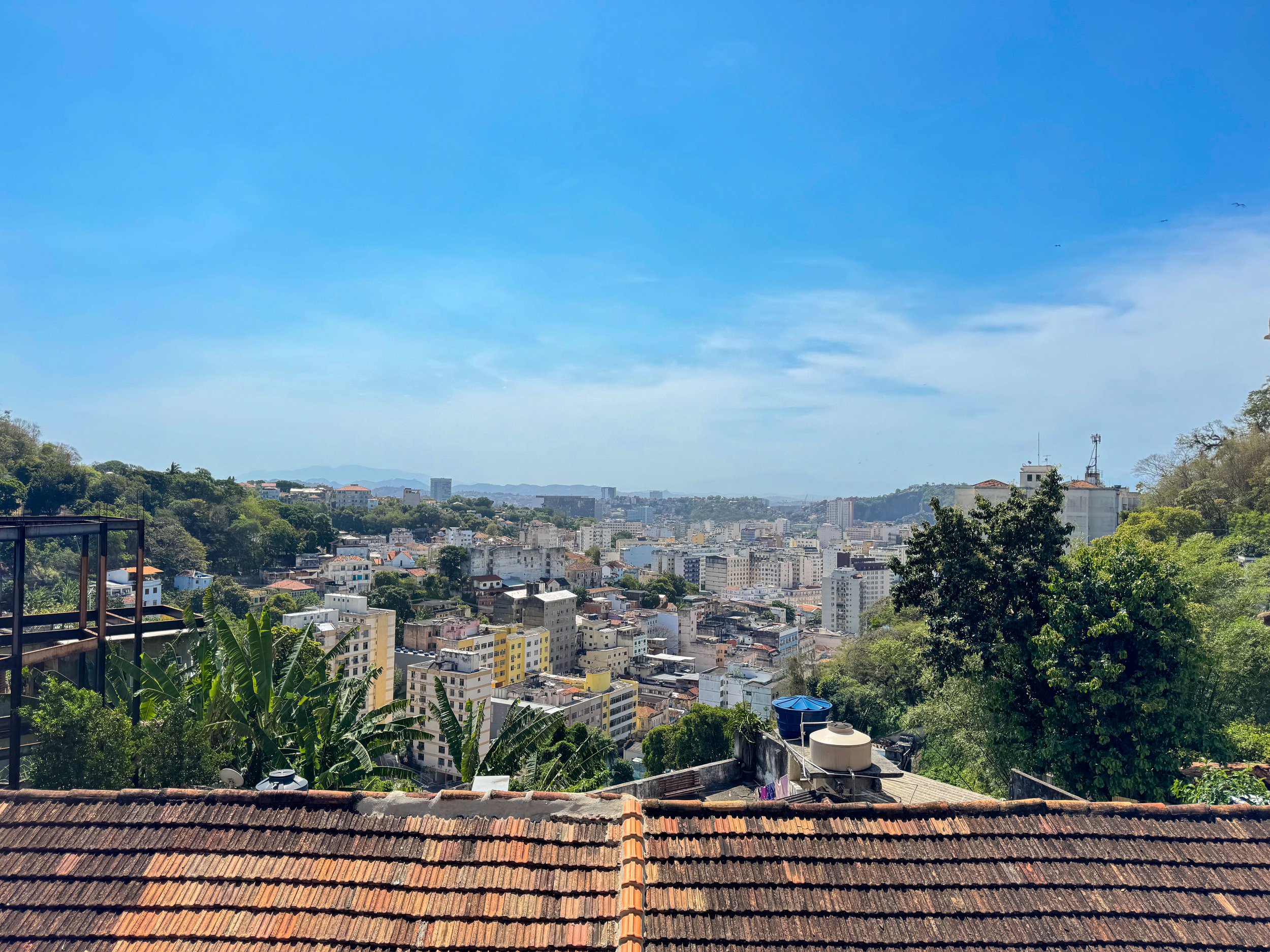
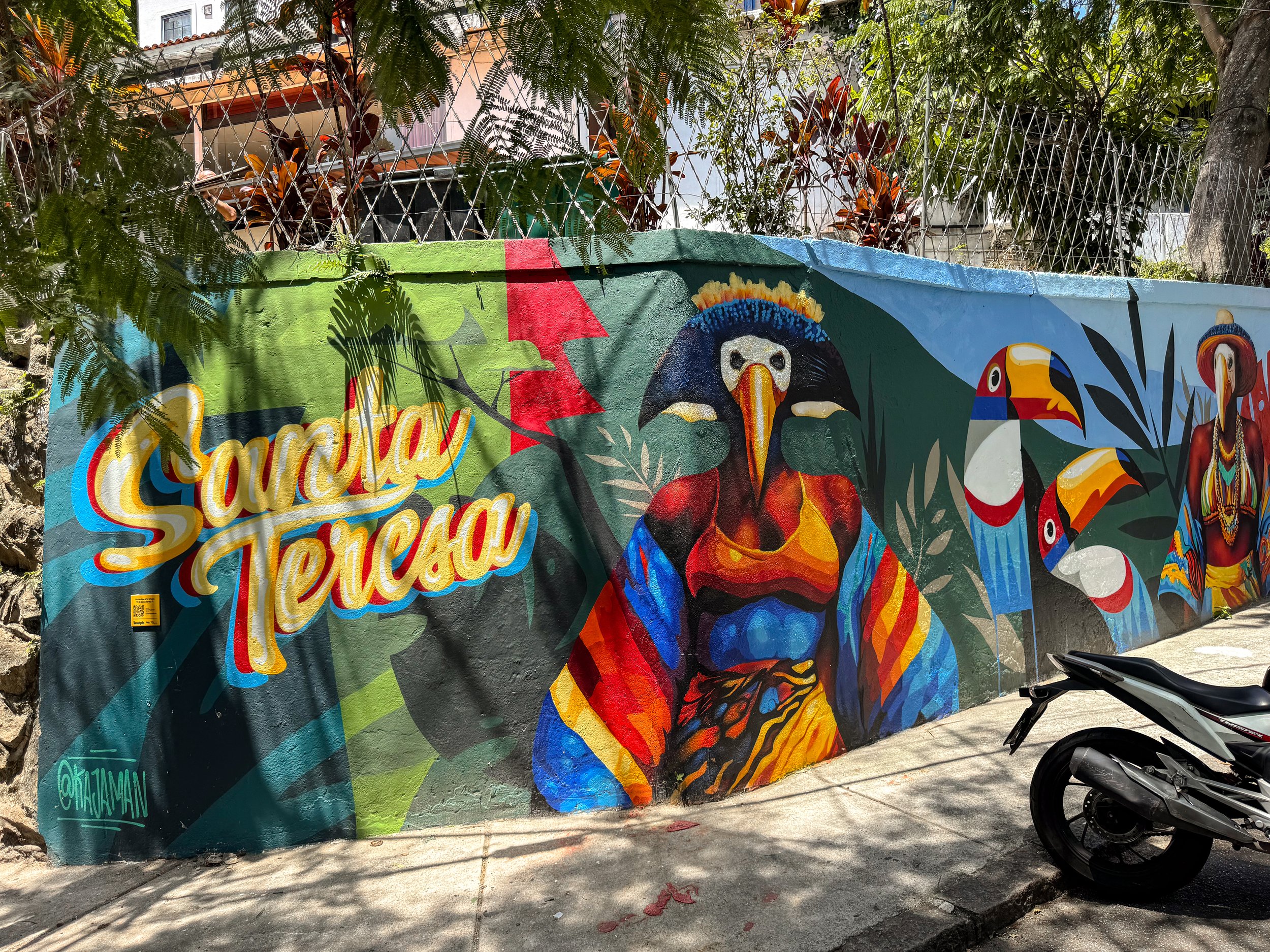

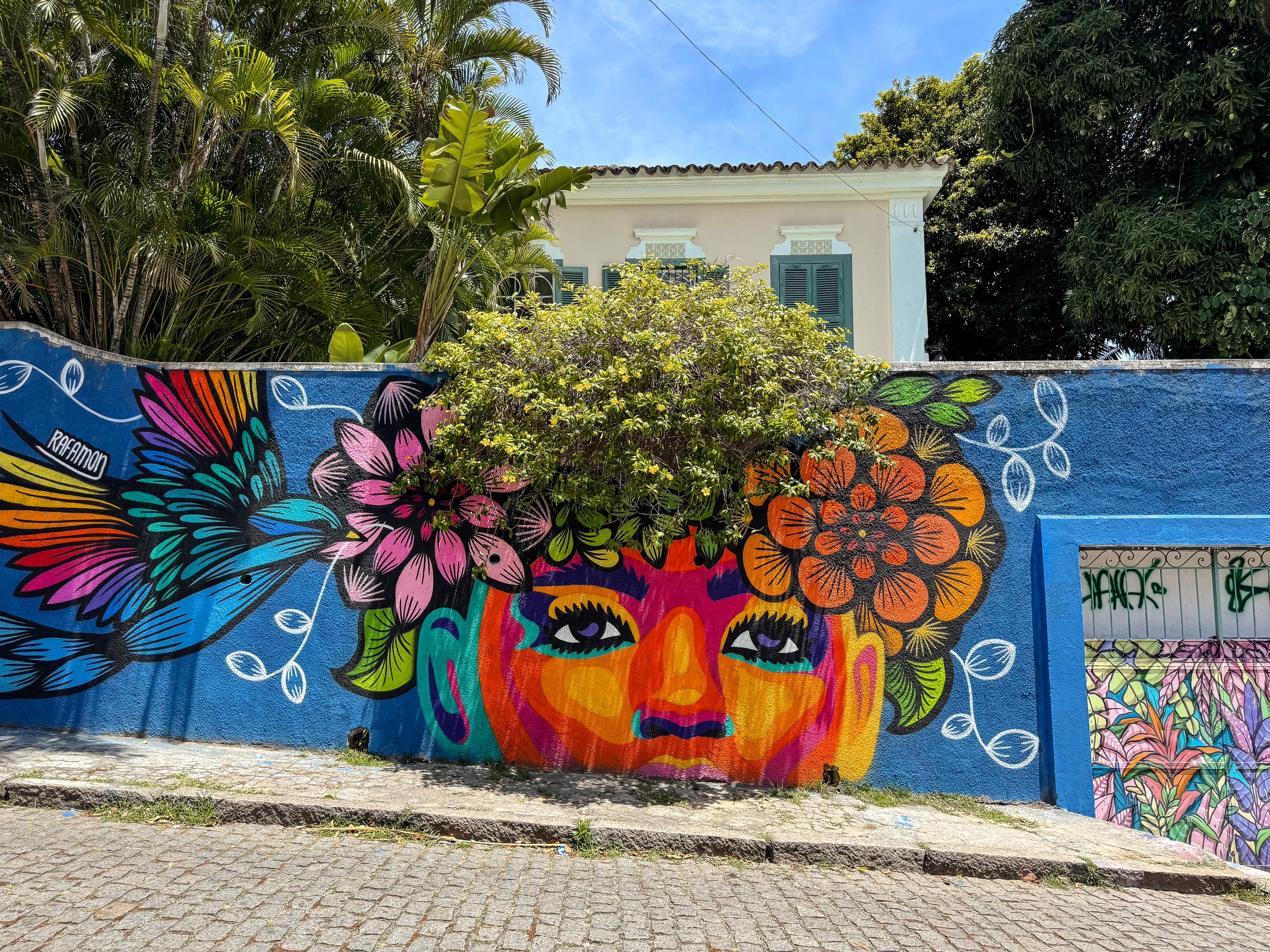
Santa Teresa
Santa Teresa is a hilly neighborhood with winding cobble stone streets, scenic viewpoints overlooking neighboring favelas, a restored tram, colorful street murals, and Brazilian restaurants.
Santa Teresa Tram. A historic yellow tram that rides through the Santa Teresa neighborhood past its landmarks and sights, making quick stops at stations along the way. We took the tram from the main station near the Metropolitan Cathedral into the neighborhood to the top of the hill. From here, we hopped off and walked back down, exploring the neighborhood on foot.
Good to Know: Purchase tram tickets at the station at 9am to avoid the crowds.
Largo dos Guimarães. The small central plaza in Santa Teresa with a tram station and a street with several cute cafes, vintage style restaurants and Brazilian shops.
Casanossa. A beautiful restaurant along the Santa Teresa tram route with a multilevel outdoor courtyard under the dappled lighting of trees with views of the hilltop architecture. We came here for lunch, ordering the bohlinos de bacalau, ceviche and a cold Brazilian beer.
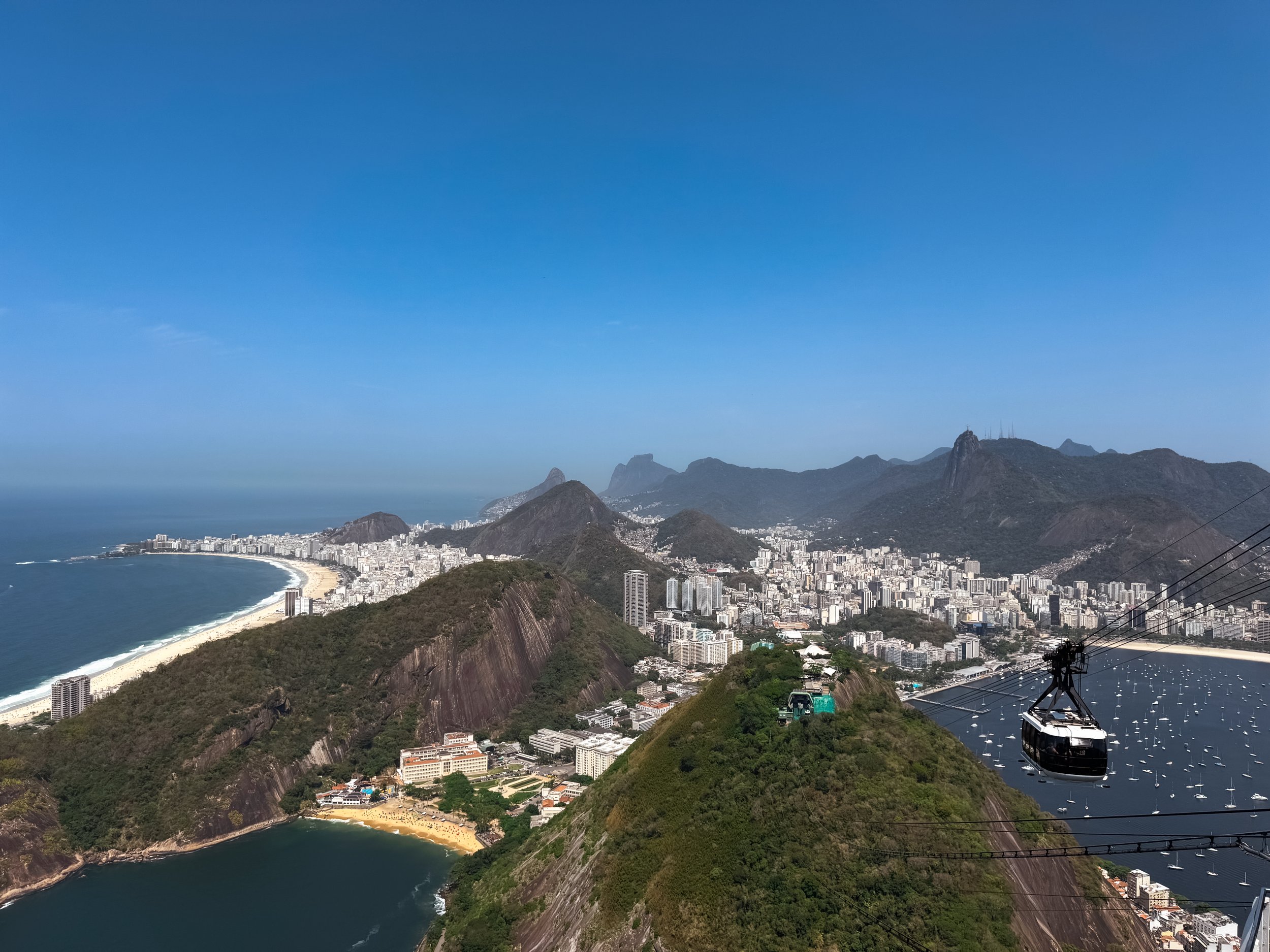
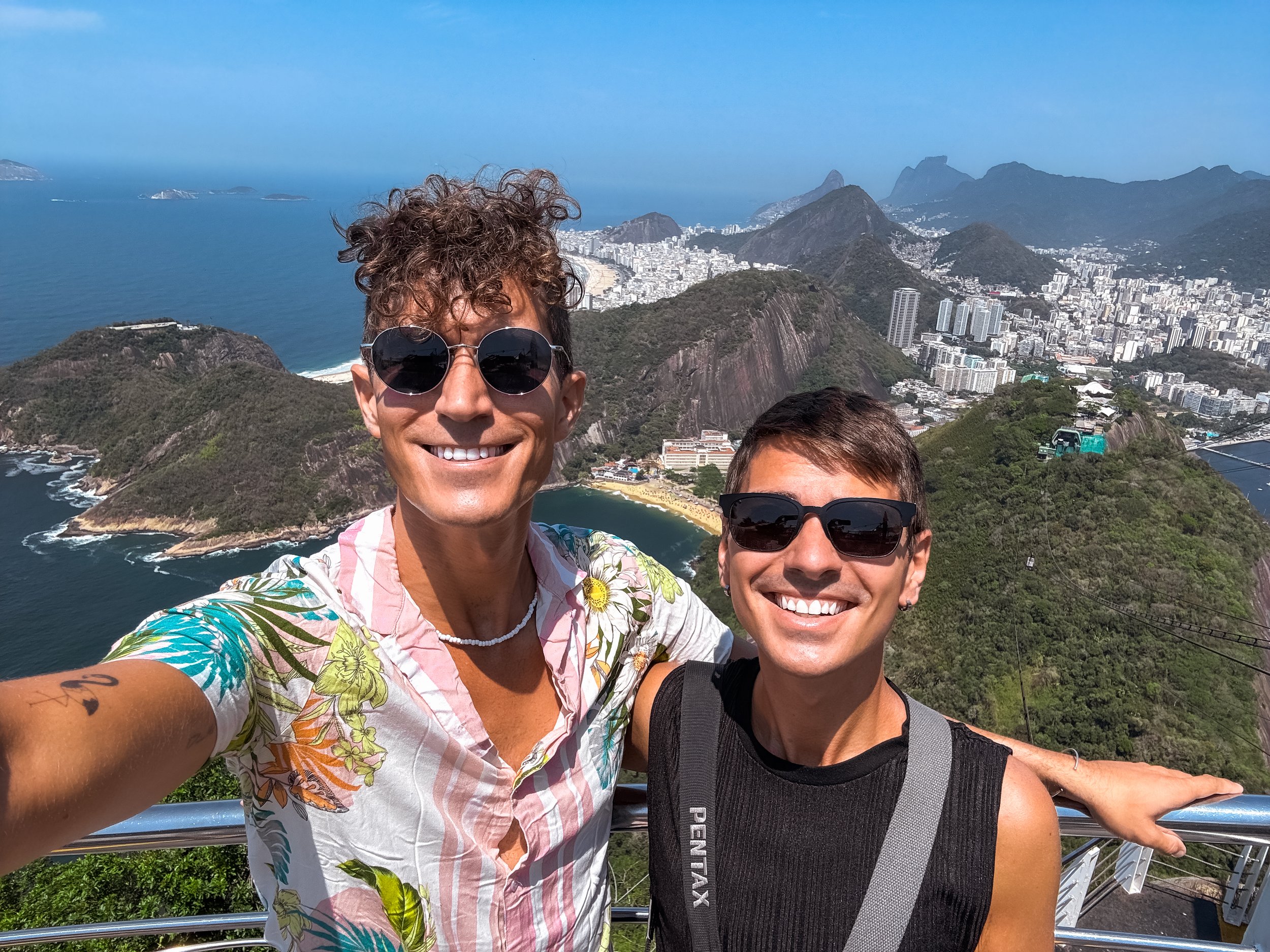
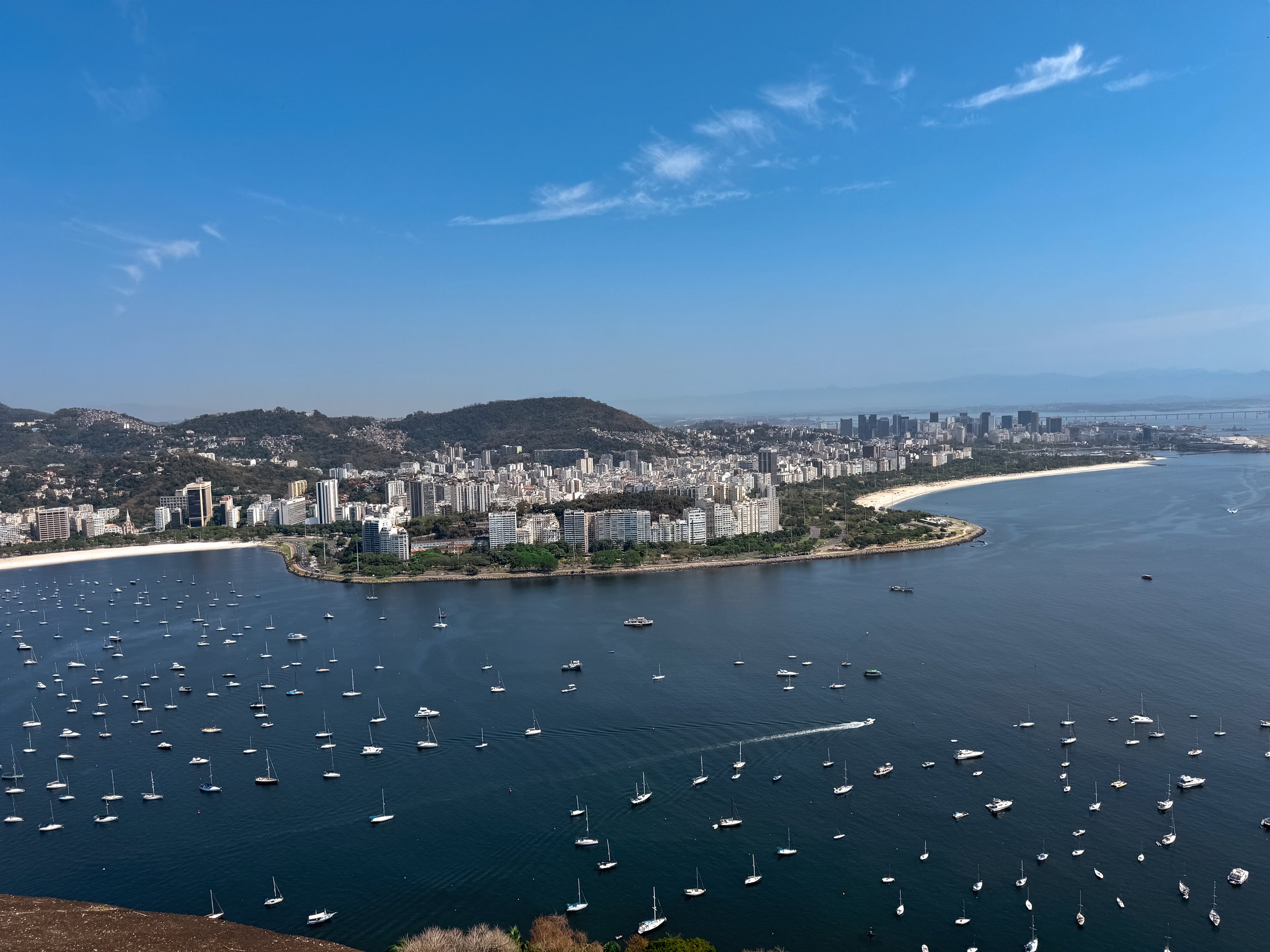
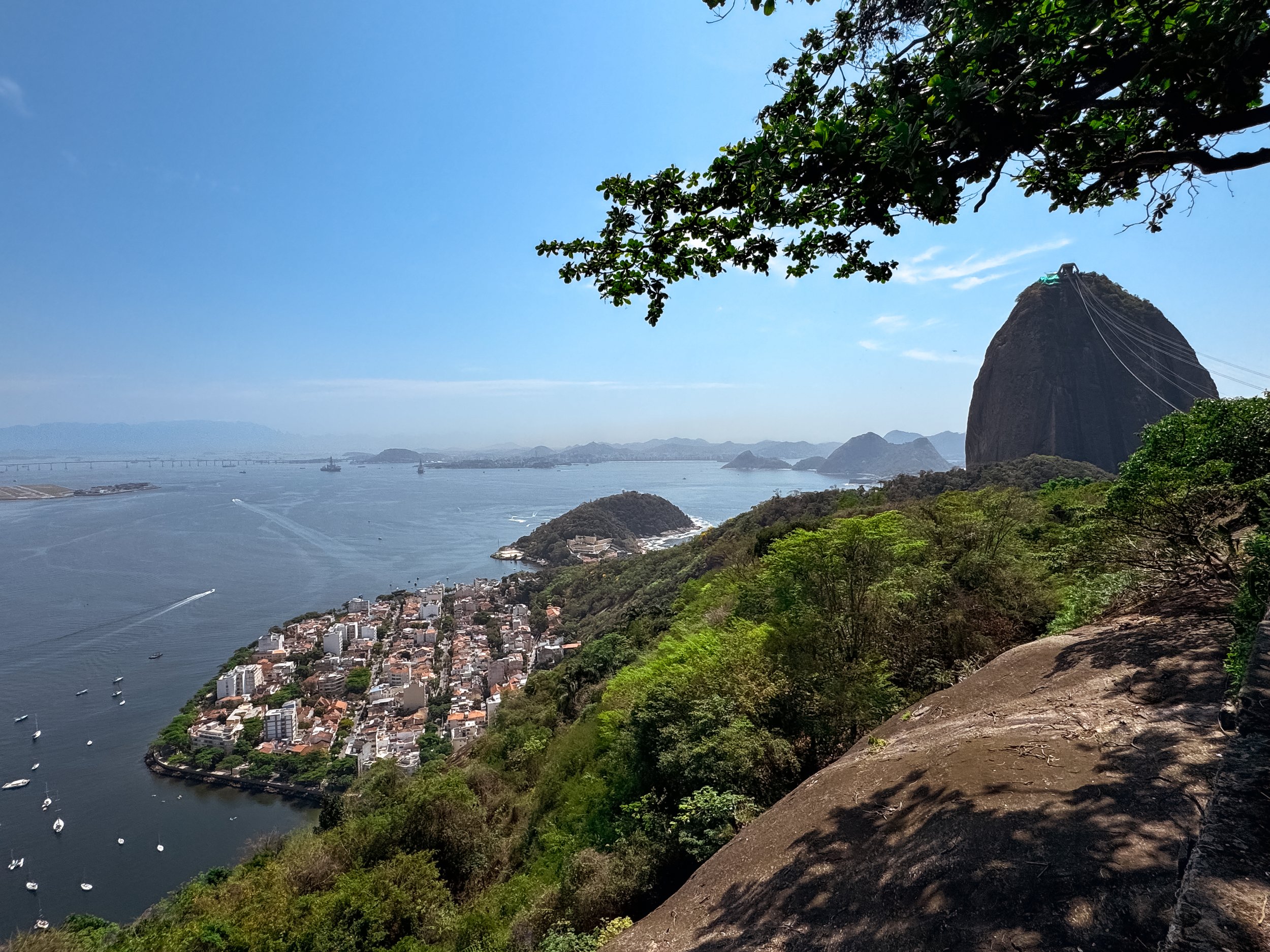
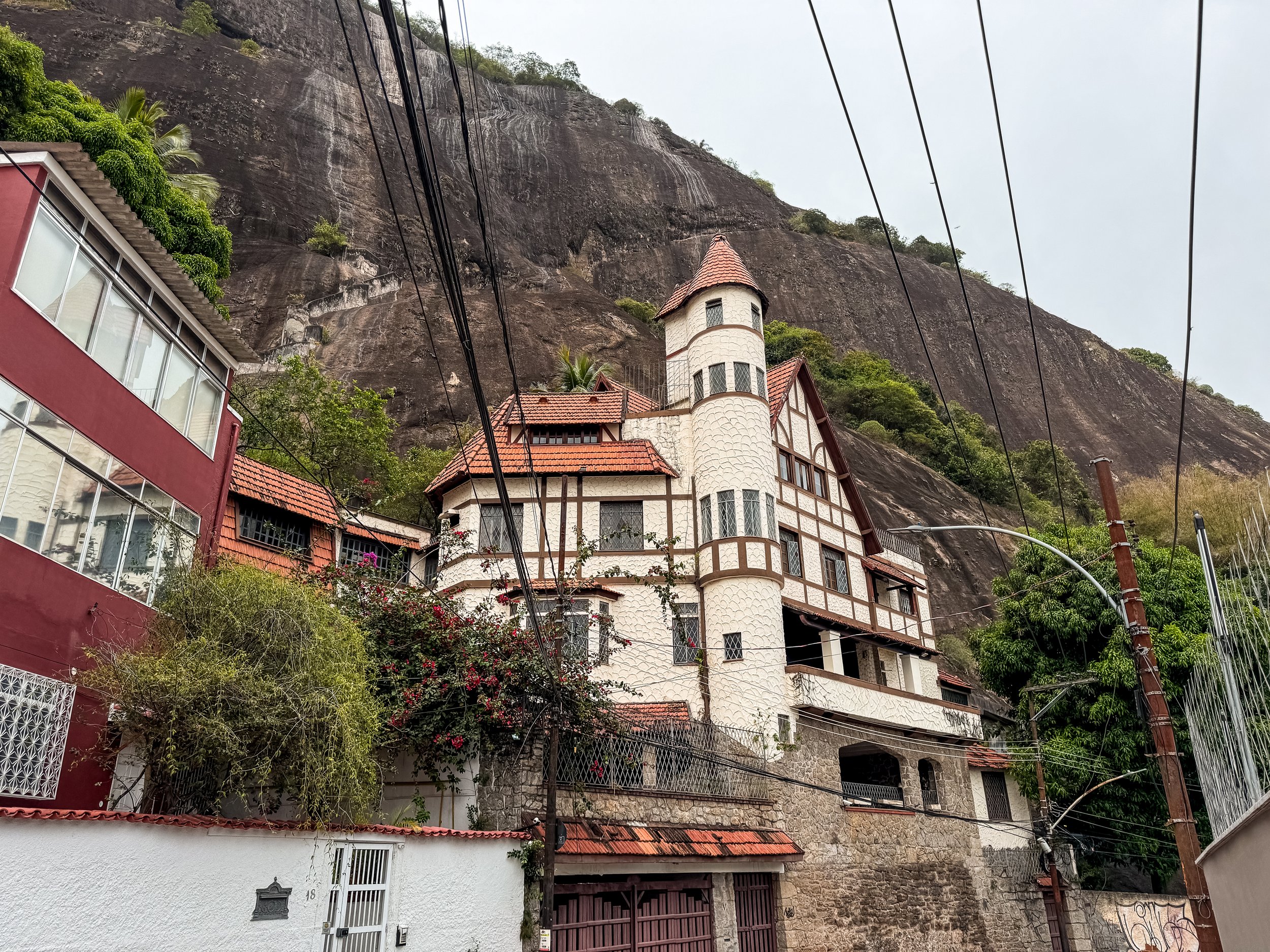
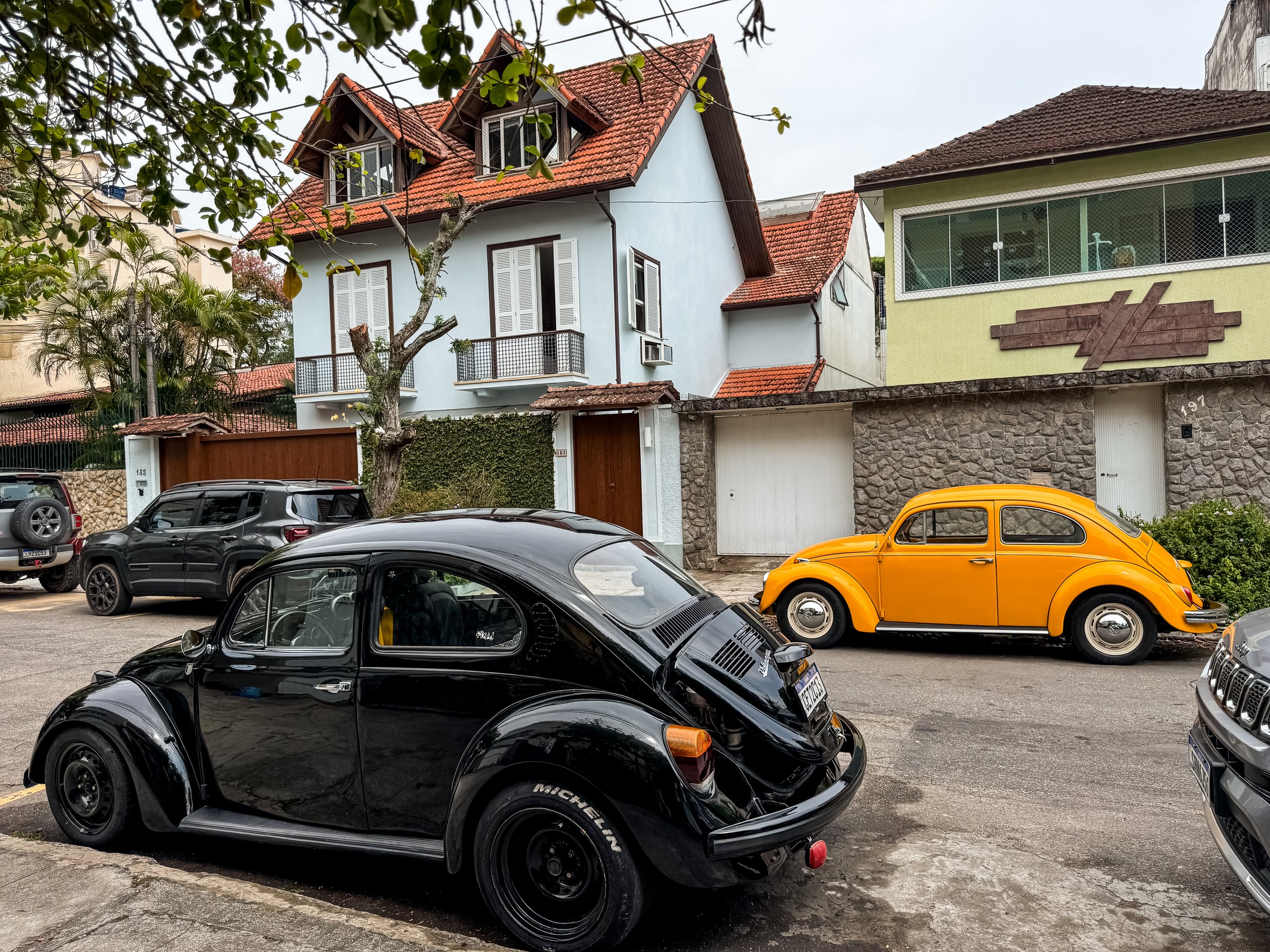
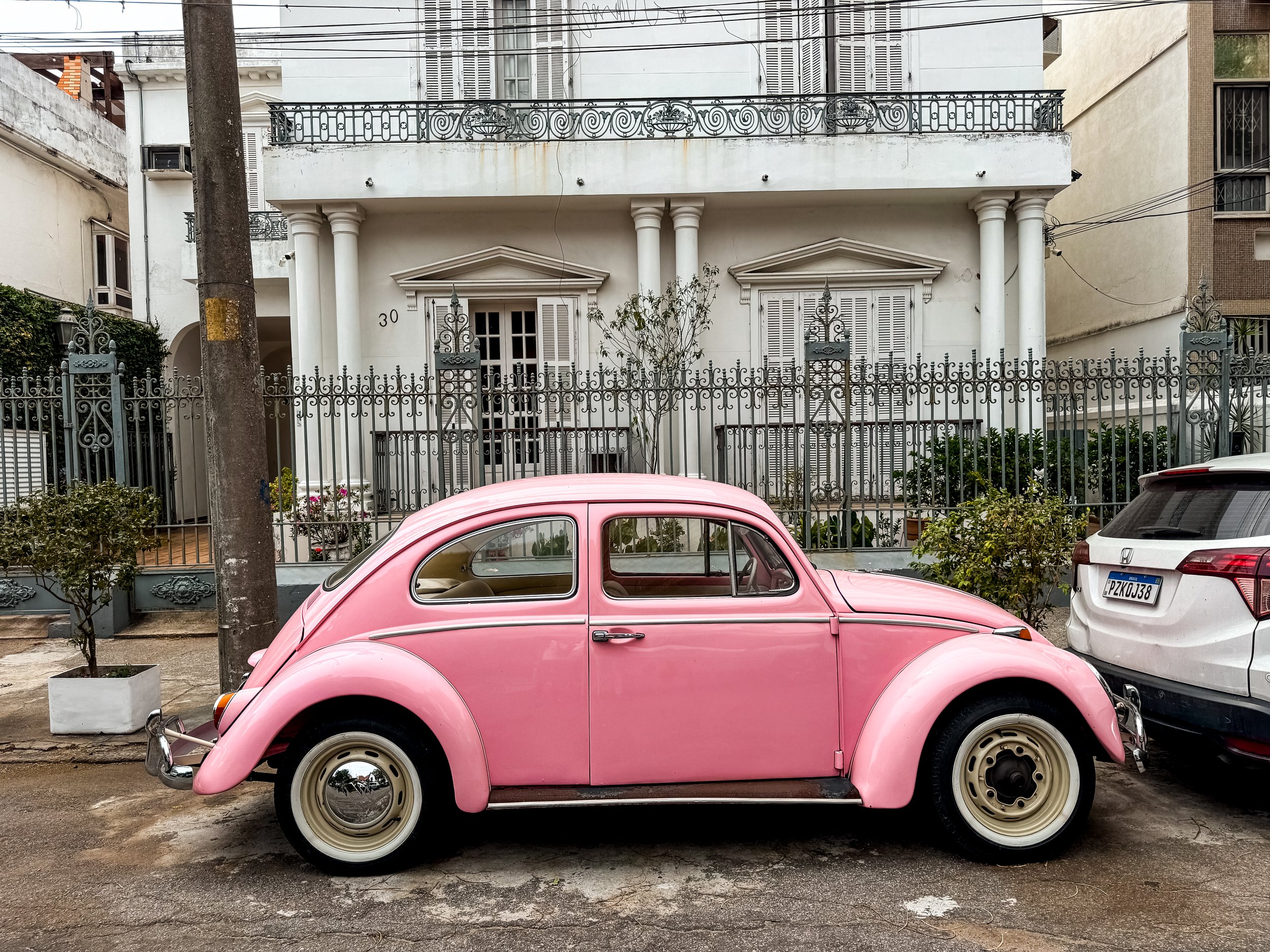
Urca
Urca is neighborhood at the base of the Sugarloaf Mountain. The residential are around the mountain has views of the harbor, beautiful small beaches, tree lined streets with flowering plants, German style houses, VW Beetles and a historic military base.
Pão de Açúcar (Sugarloaf Mountain). An iconic granite mountain with panoramic views of Rio, the harbor and ocean. We took the cable car up to smaller Urca Mountain then to Sugarloaf Mountain. From the summit of each, we overlooked the city from all angles, watched airplanes fly closely overheard and spotted people climbing the sheer granite cliffs. The smaller mountain has a garden with nature trails where spotted a tiny monkey climbing in a tree. Both mountains have numerous cafes, restaurants, food stands, bars and shops at their summits. While taking in the views, we ordered a coffee and brigadero, a Brazilian truffle.
Good to Know: Only go on a clear and sunny day. We purchased our tickets online ahead of time for the 9am entry to beat the crowds. Book here!
Praia Vermelha (Red Beach). A small beach named after its red hued sand at the base of the Sugarloaf Mountain. Come here to listen to the waves crash while relaxing in a beach chair under an umbrella with a fresh coconut.
Maria Açaí. A local restaurant chain for sweetened cups of açaí with a range of toppings like coconut, granola and nuts.
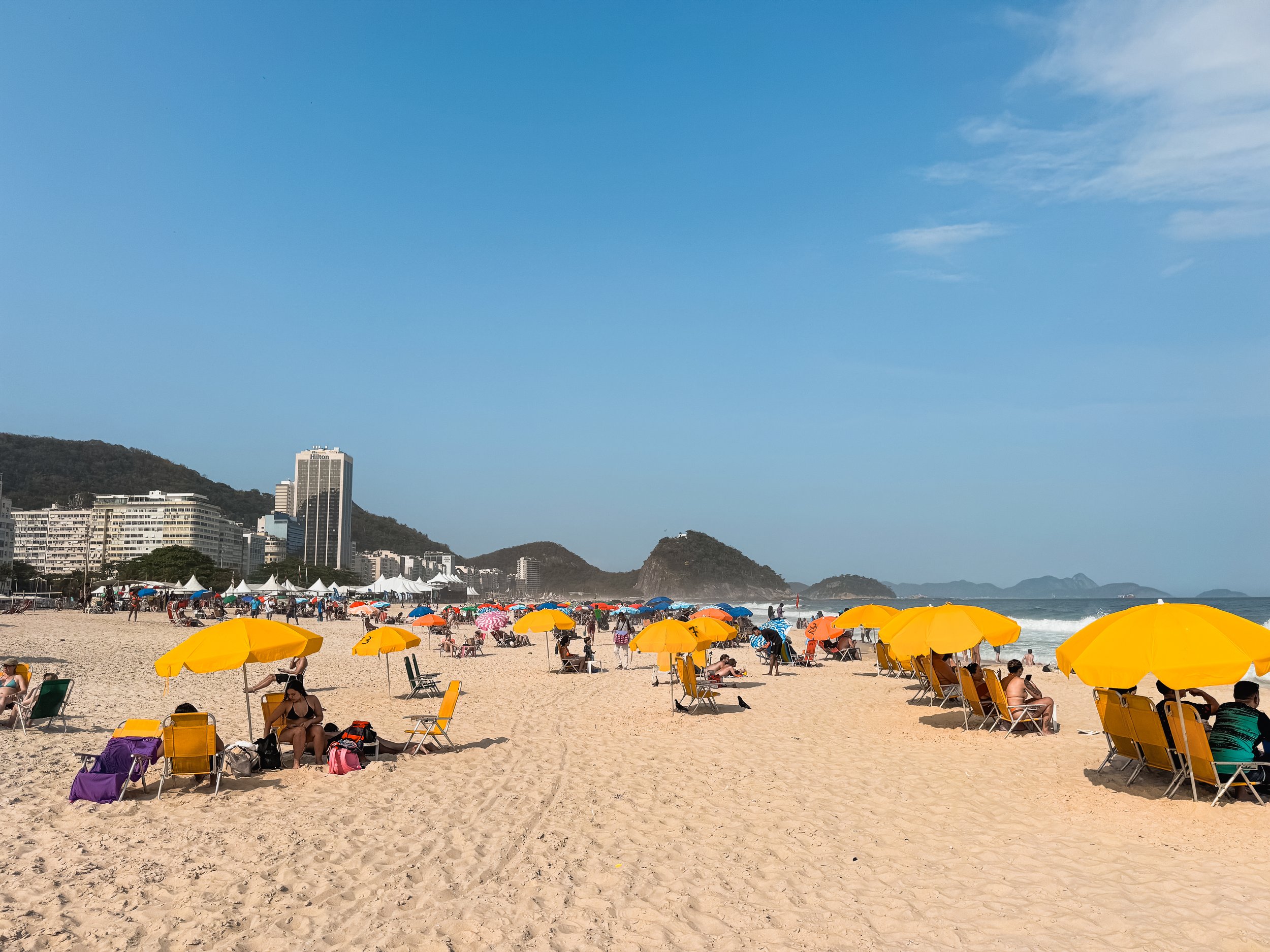
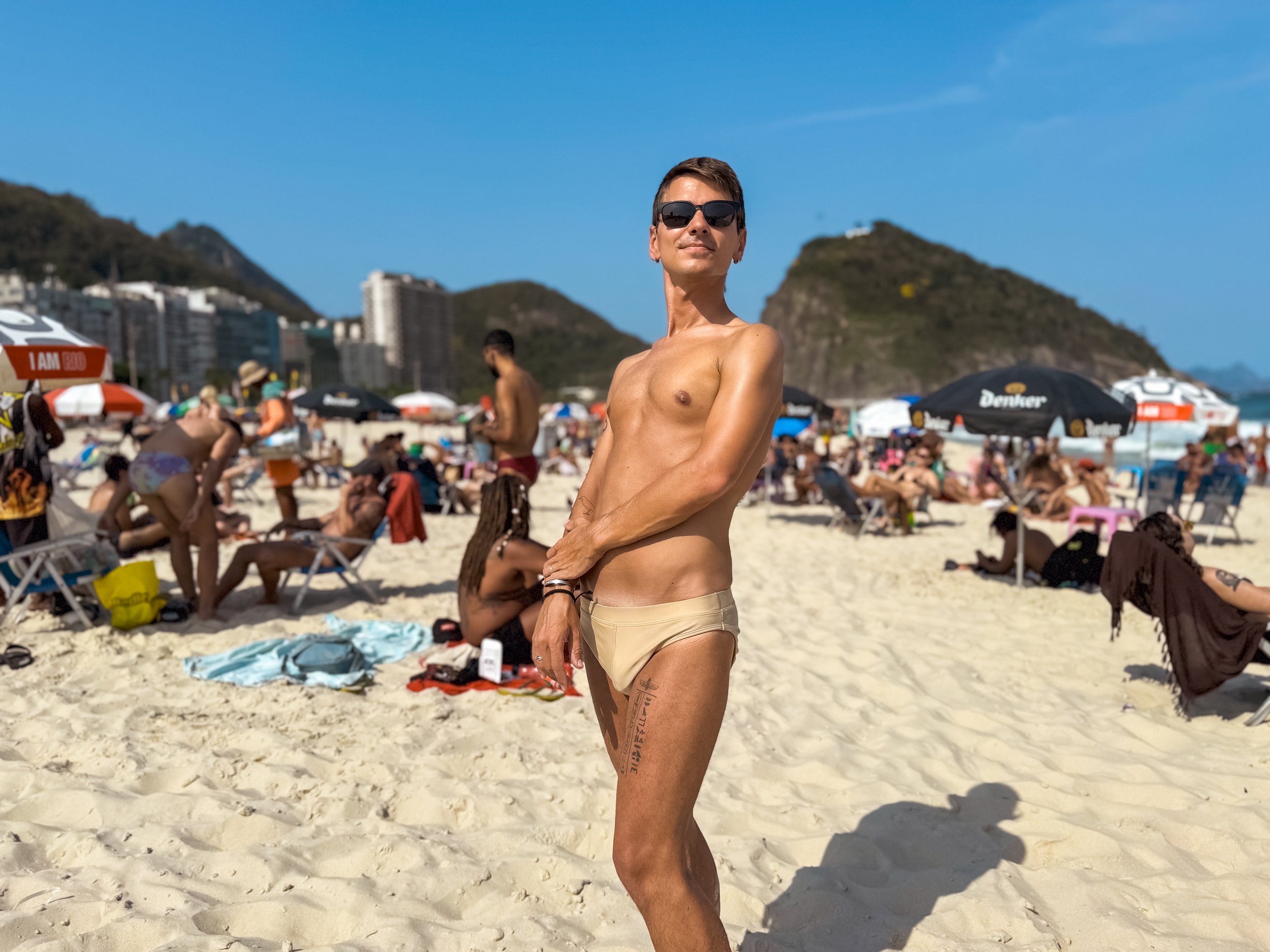
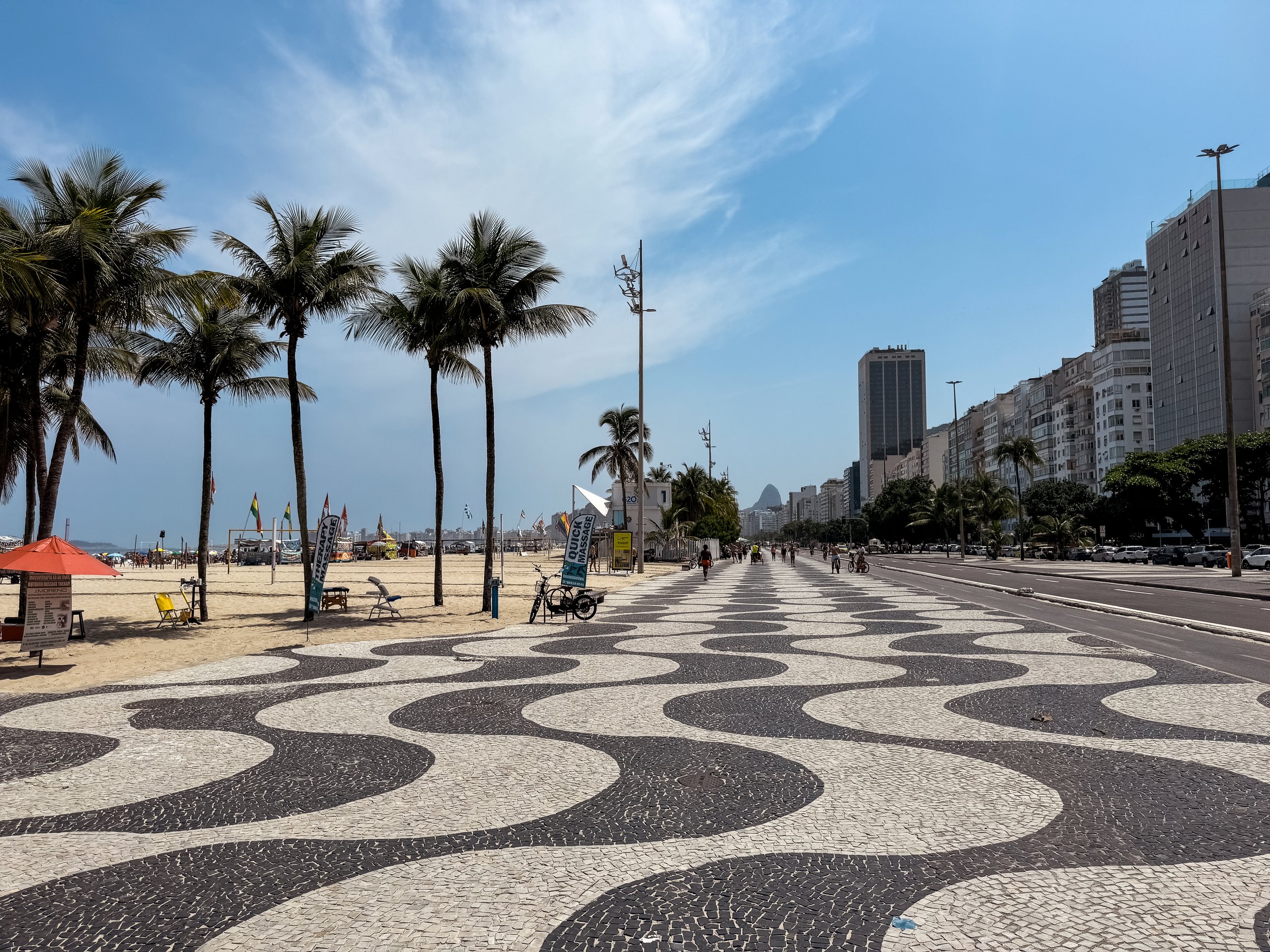
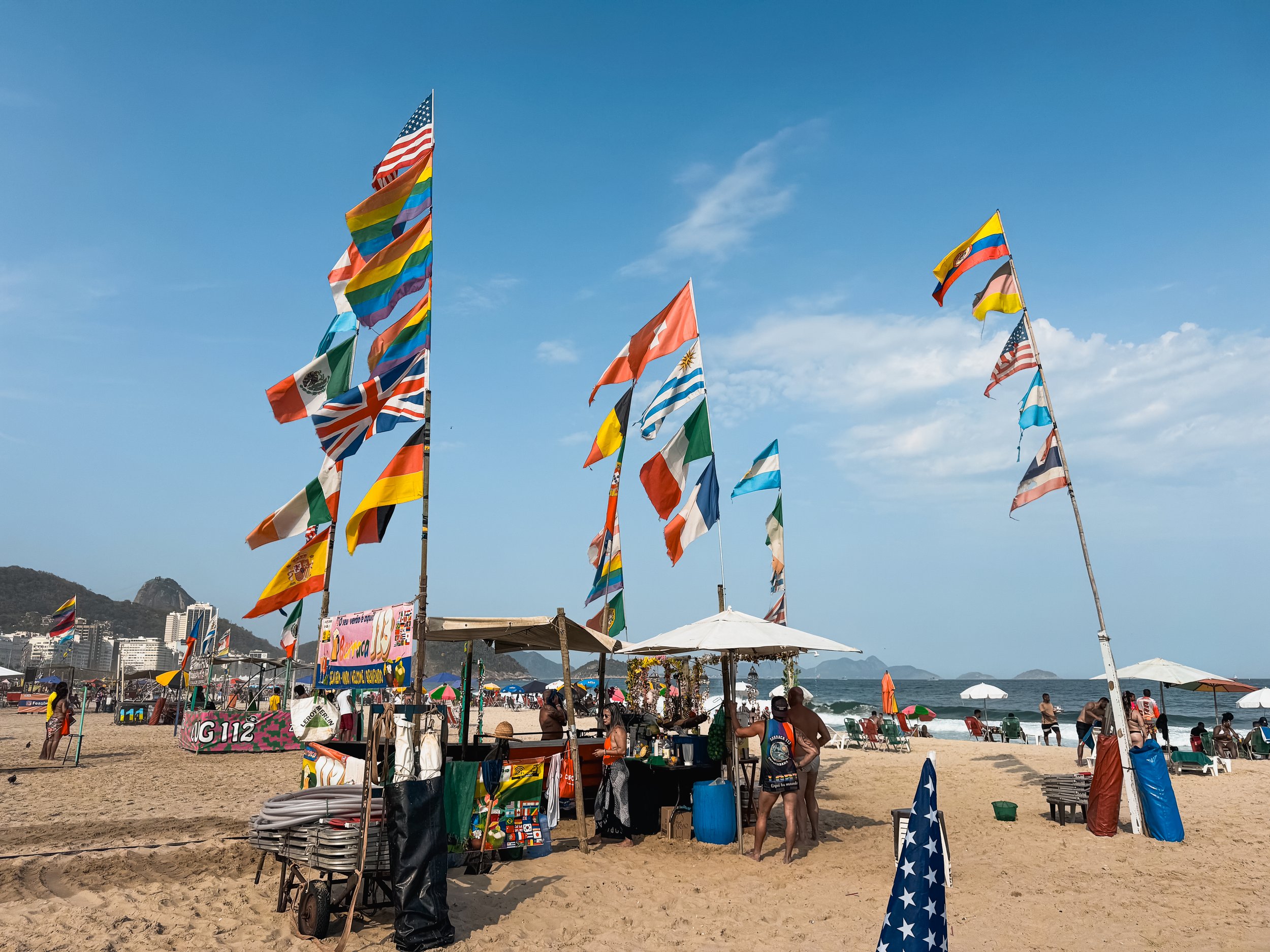
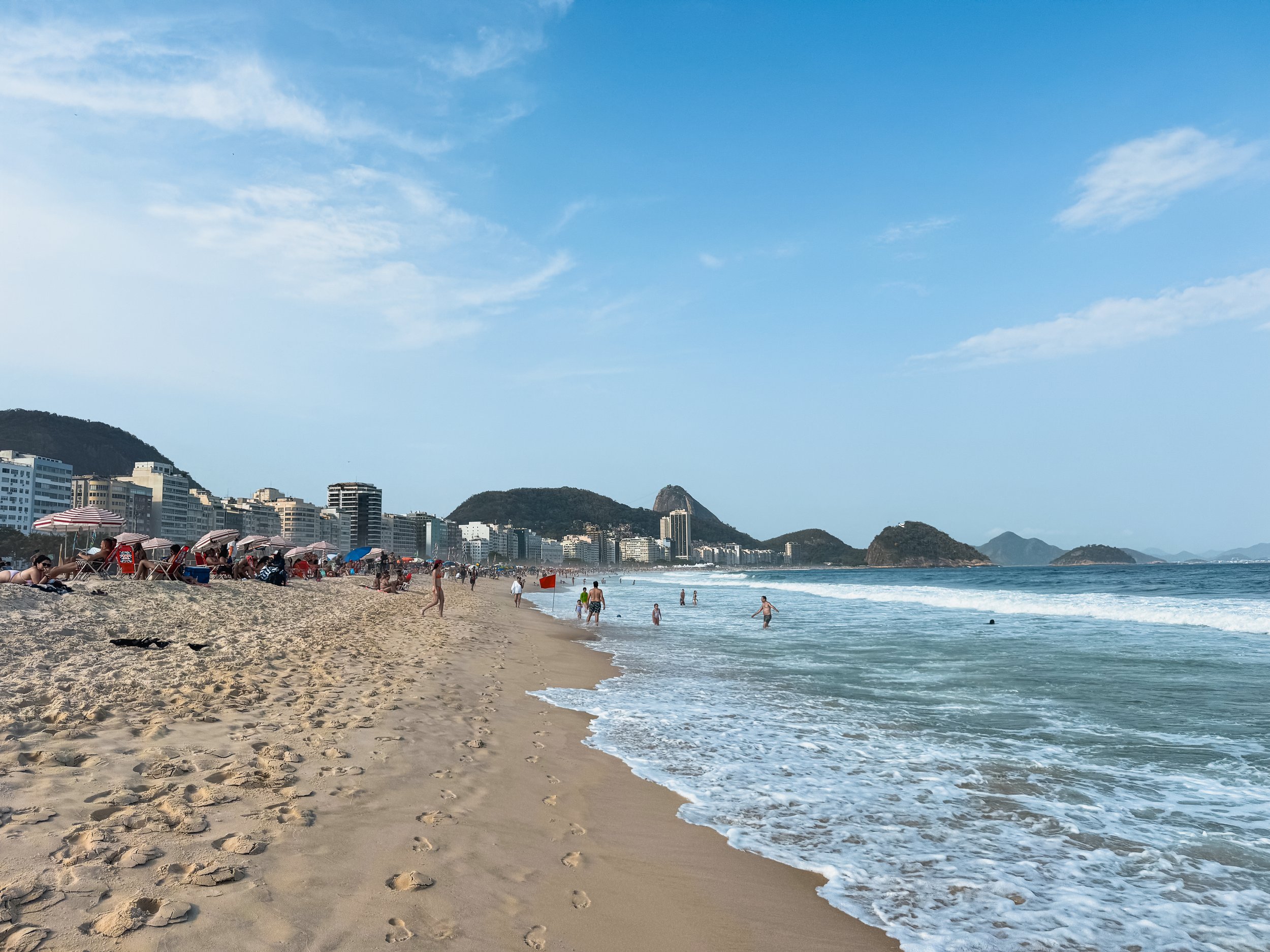
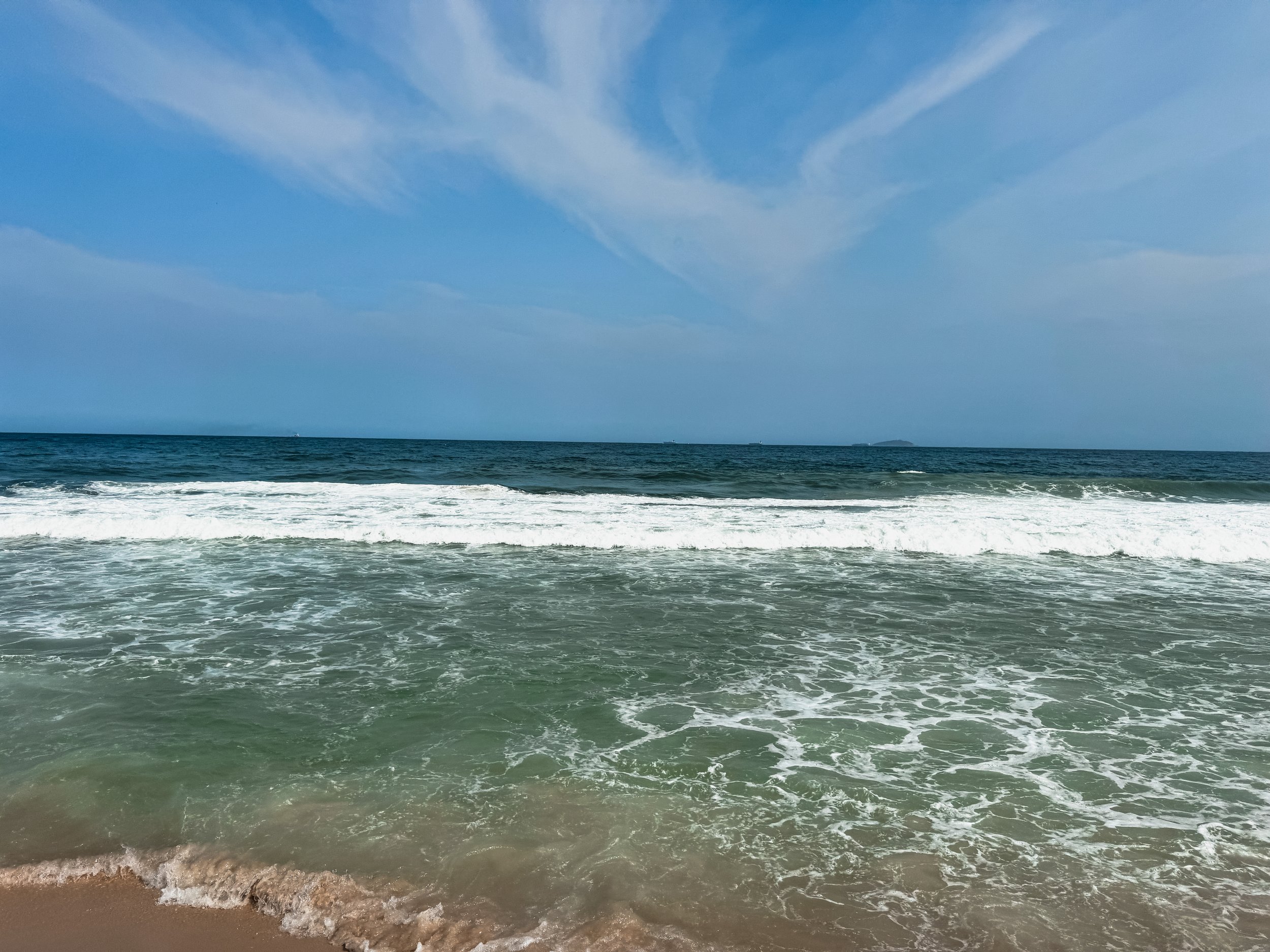
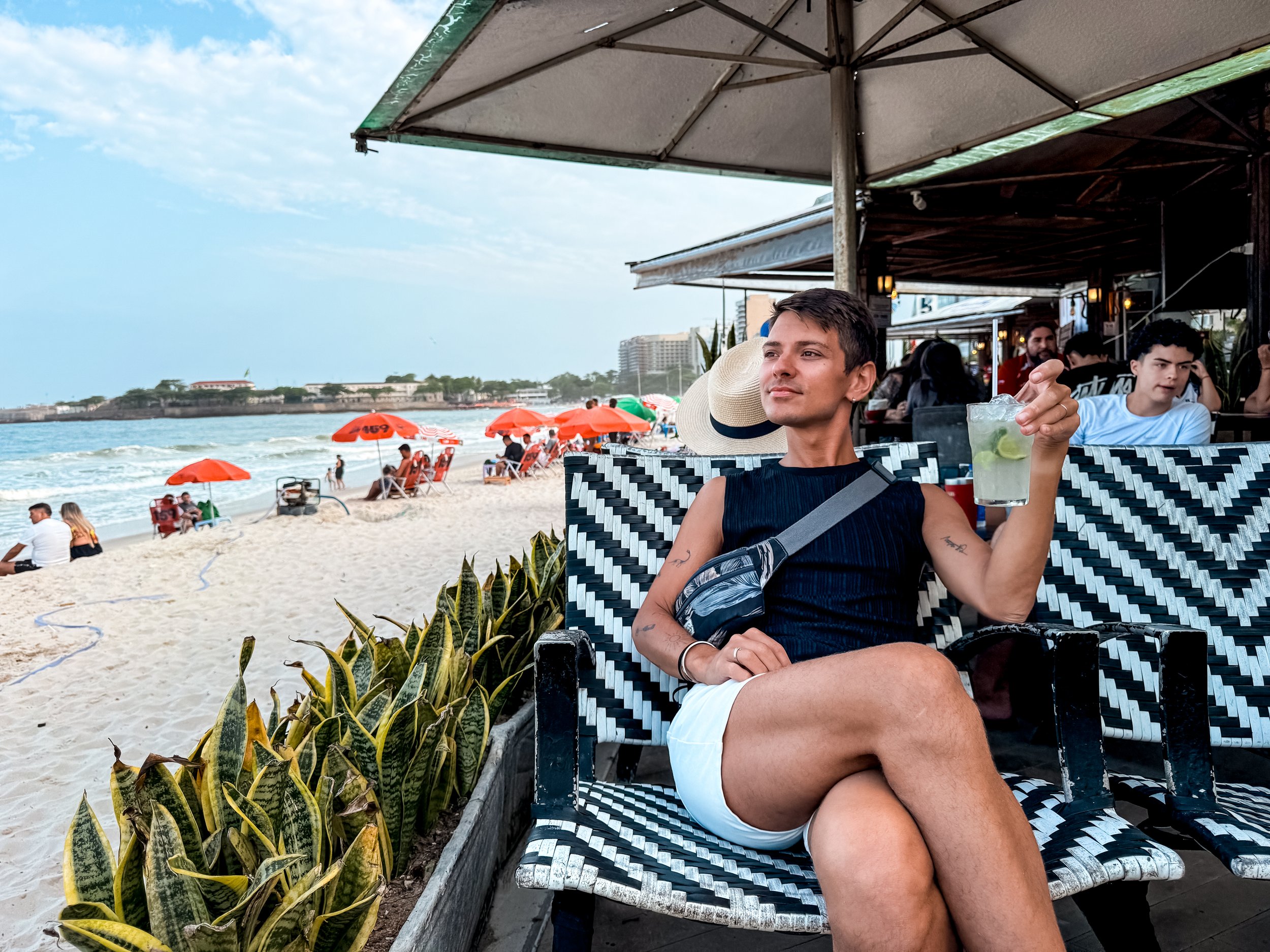
Copacabana Beach
Copacabana is a famous for its yellow sand beach lined with colorful umbrellas and thousands of people relaxing under the Brazilian sun. At Borrachas (beach tents), vendors rent lounge chairs and umbrellas, sell coconuts, tropical cocktails and beverages. Food vendors walk the beach pushing carts with boiled corn, carry portable grills with smoked cheese and trays of skewered shrimp while others sell cigarettes & drugs.
All kinds of people visit Copacabana Beach. Vendors fly dozens flags as welcoming symbols to attract foreign tourists, sports fans, gays and other Brazilians. There’s not a specific gay section though most gays congregate anywhere around the large and numerous rainbow flags. It can be a sporty spot, we watched as guys played competitive games of foot volley and others jogged by shirtless along the promenade as we sipped on caipirinhas.
Atlantic Promenade. The black and white tiled promenade is lined with beachside restaurants and bars. We walked along its entire length, taking advantage of the 2 for $R20 caipirinhas ($3.50 USD). Across the street, along Atlantic Avenue, skyscrapers, upscale restaurants, hotels and residences provide a metropolitan feeling to the beachy atmosphere. There’s no bad spot along Copacabana Beach but the best views are from the west looking towards Sugarloaf Mountain.
Joaquina Restaurant. A restaurant in Copacabana with contemporary versions of classic Brazilian dishes and cocktails made with Brazilian fruits and syrups. We ordered the tapioca breaded shrimp with passion fruit mango sauce and the seafood moqueca made with dorado, plantain, farina and a thick fish broth.
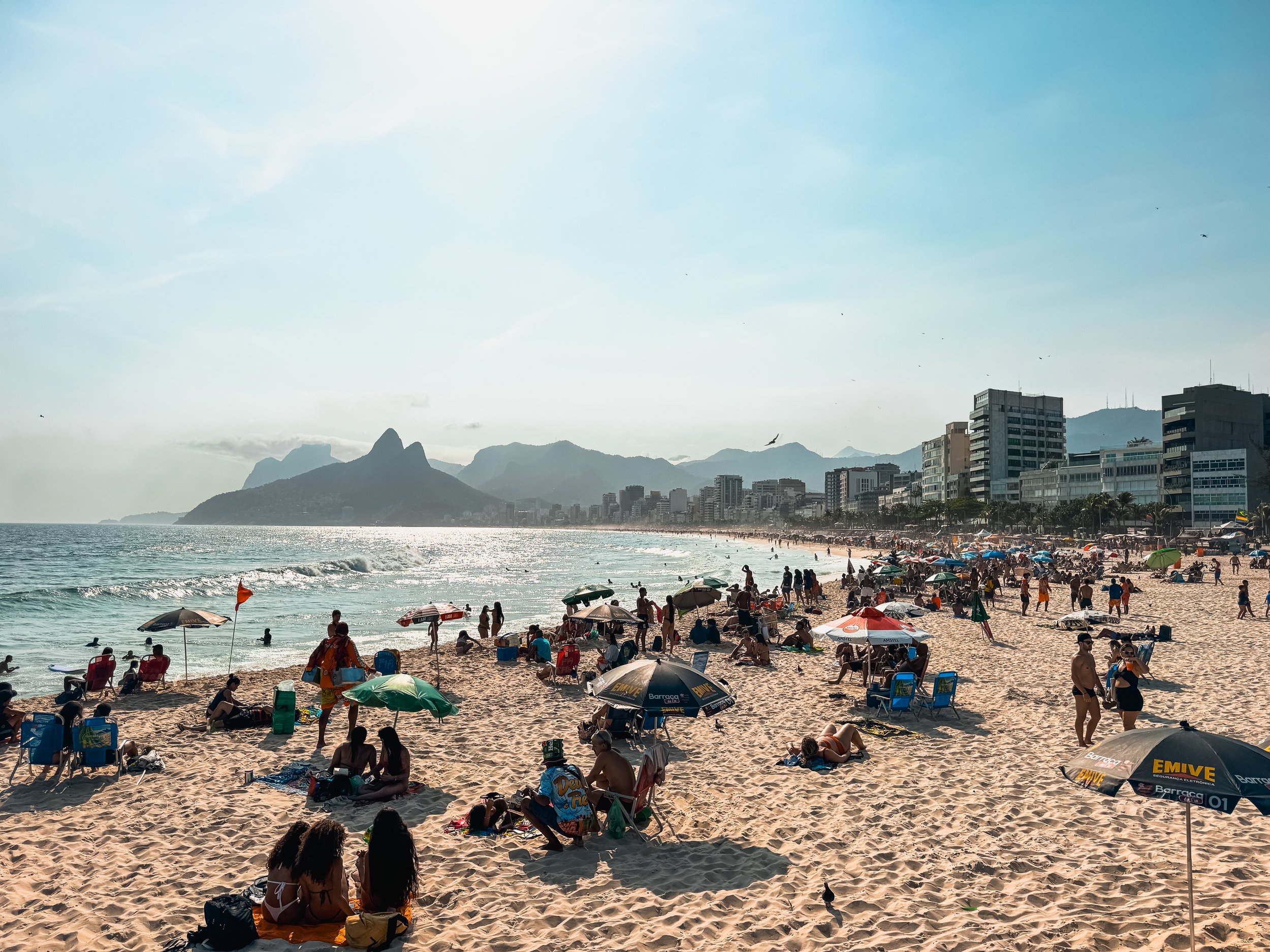
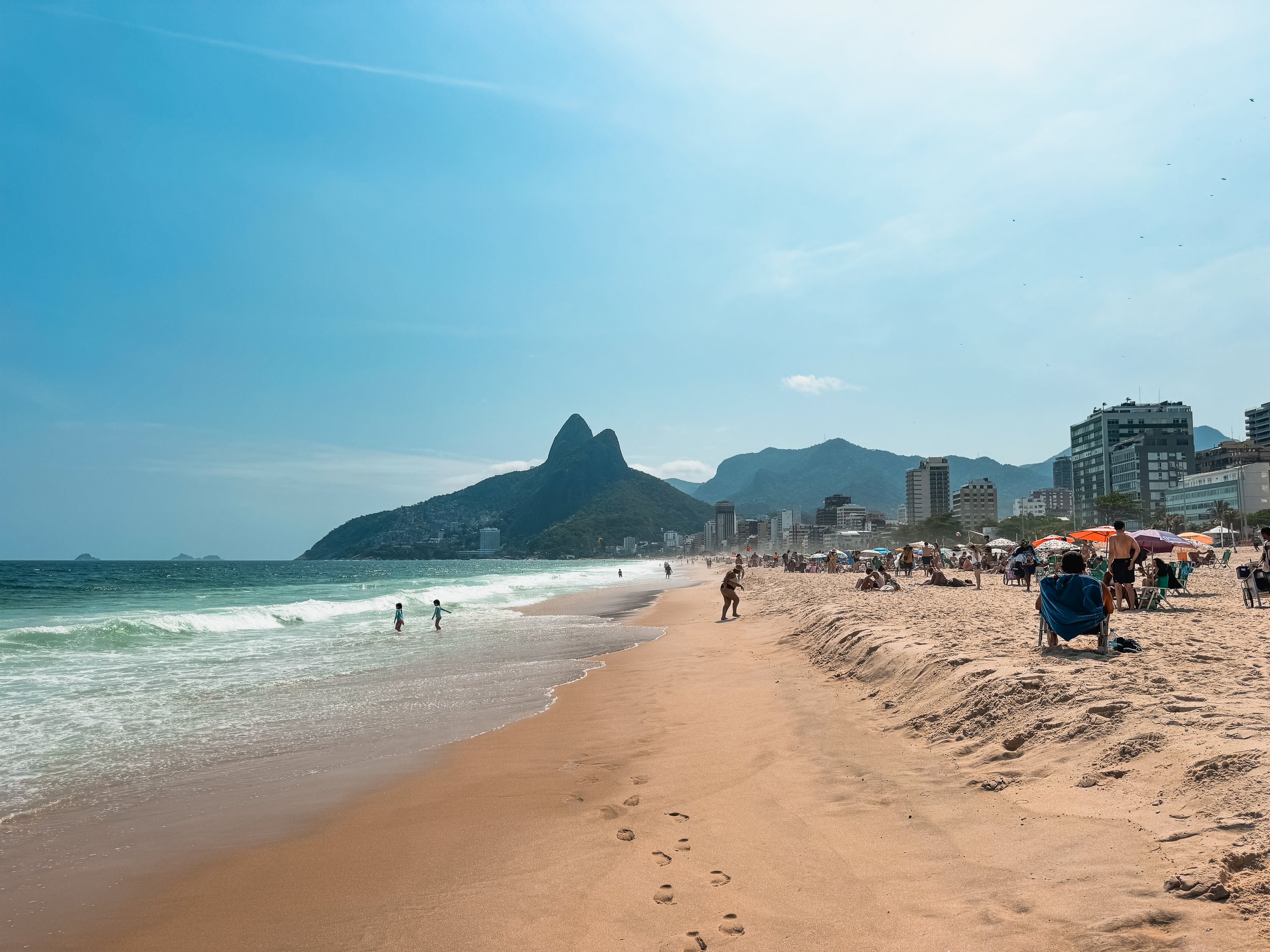
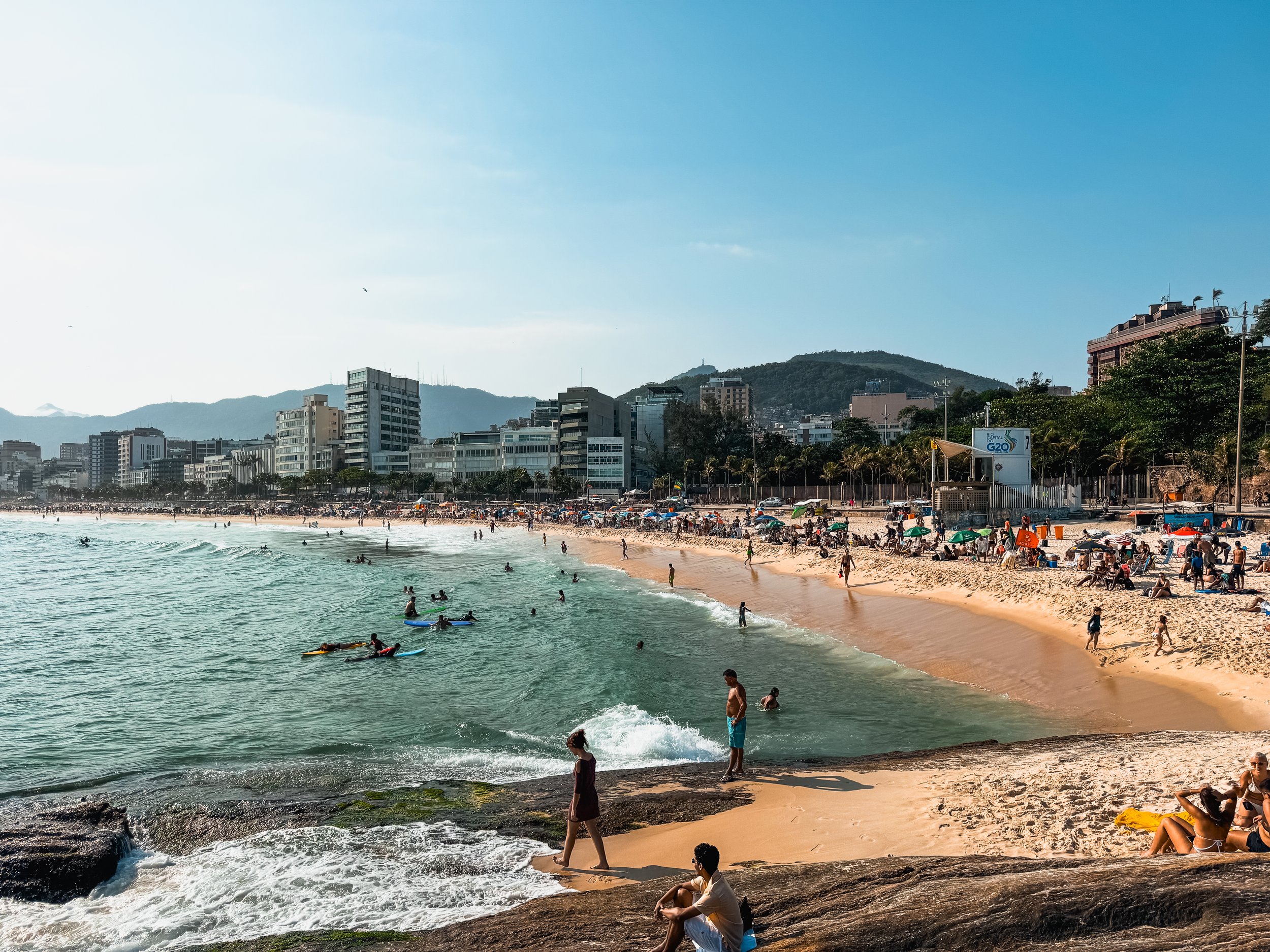
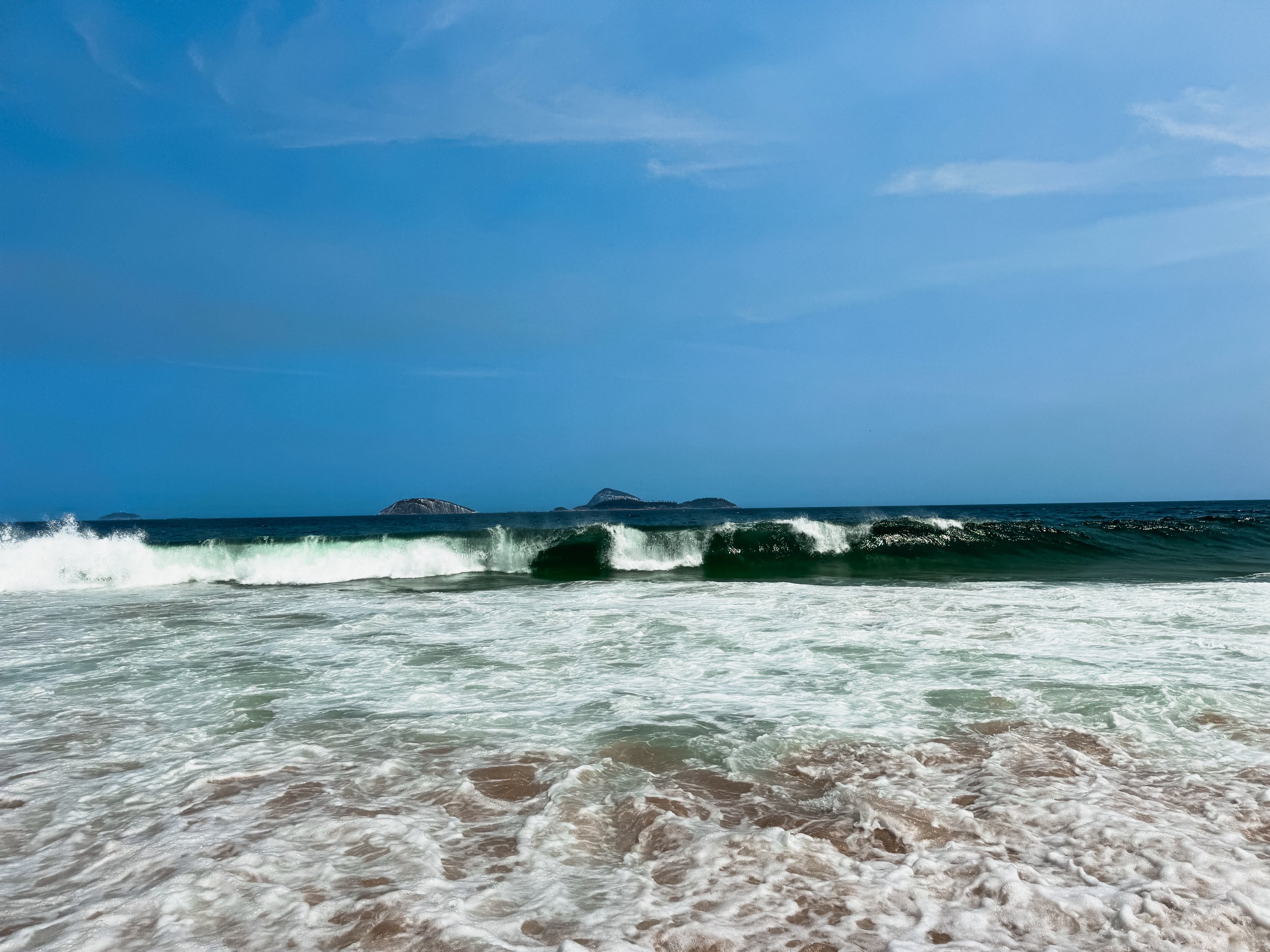
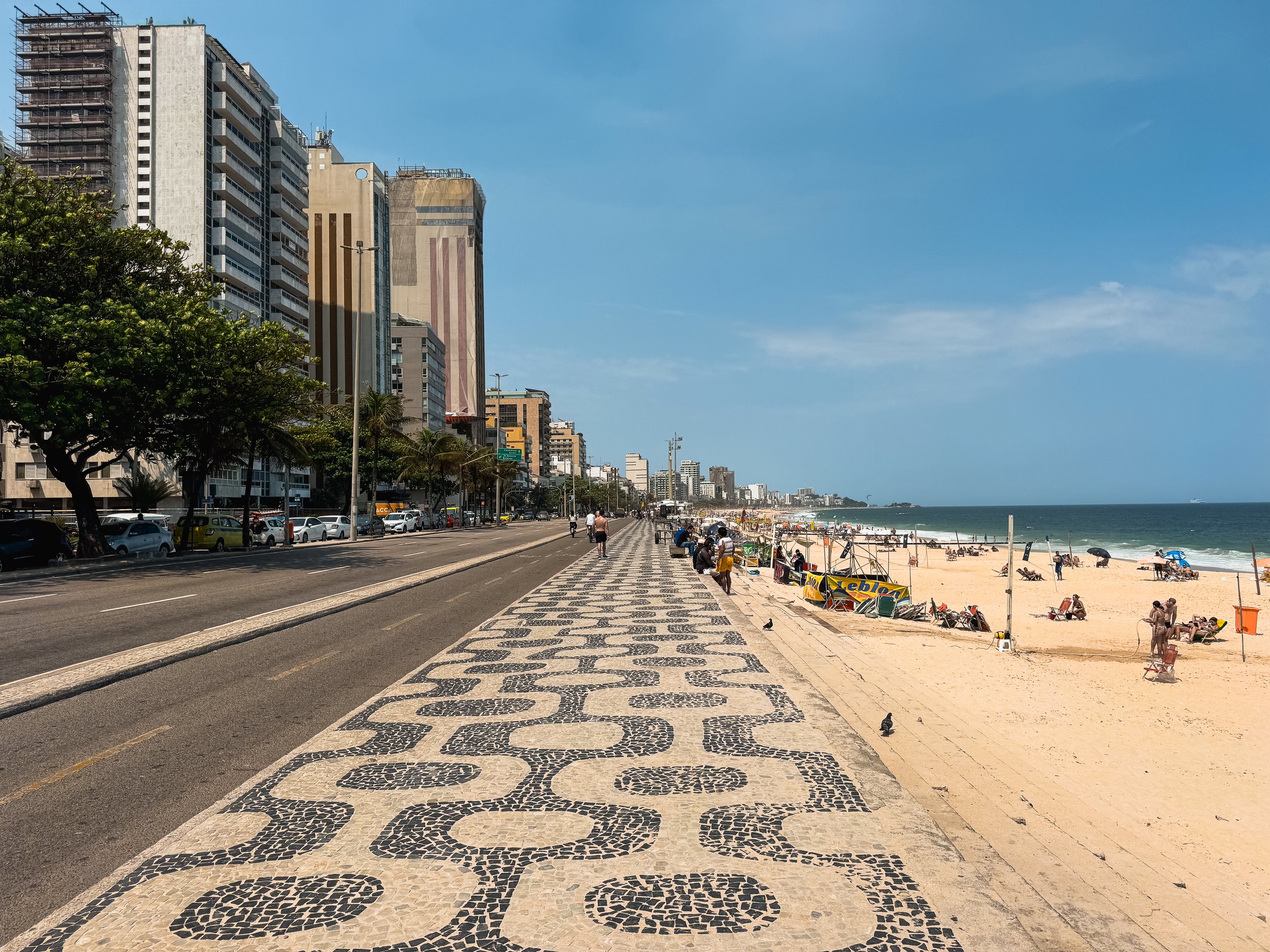
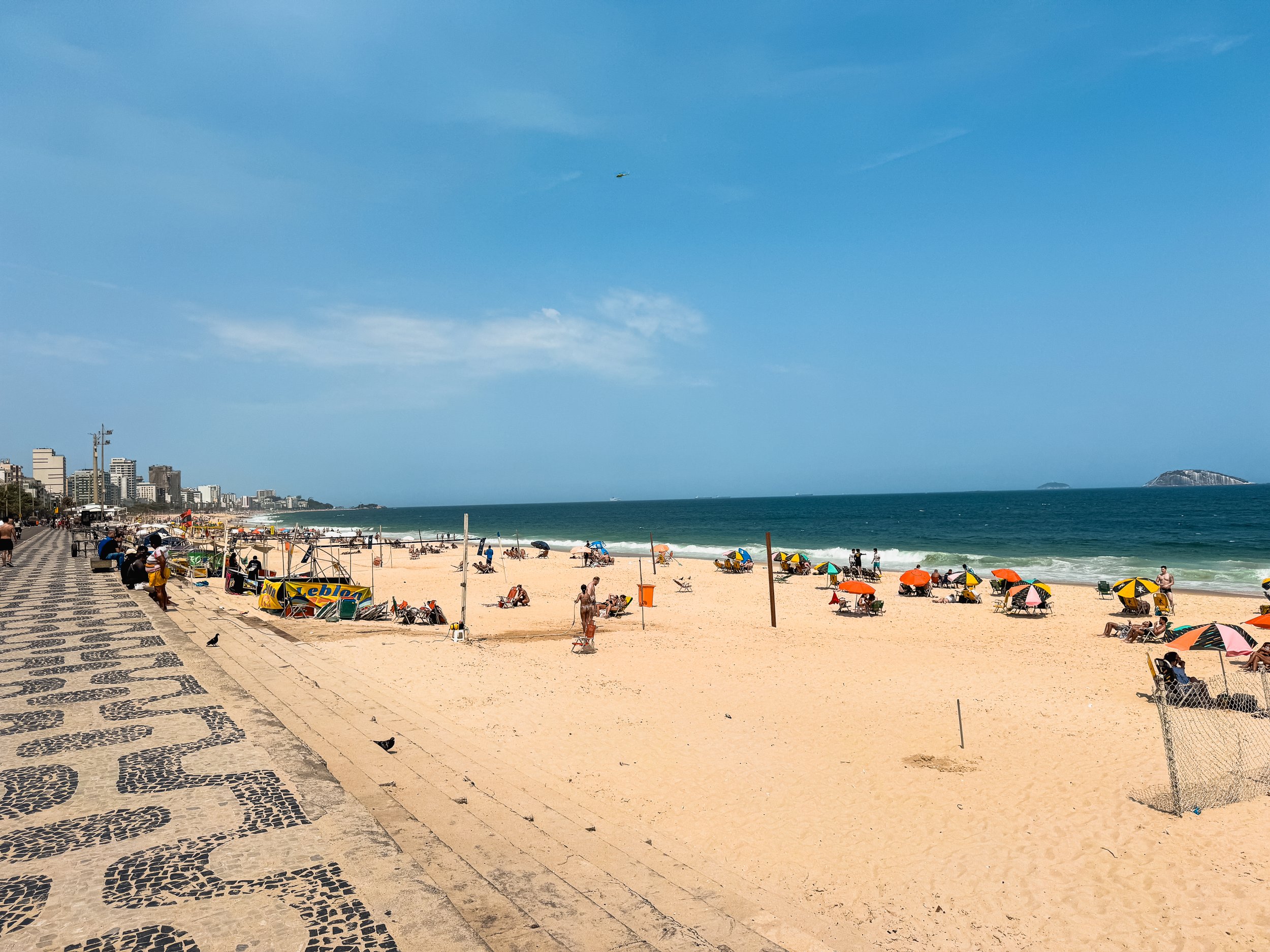
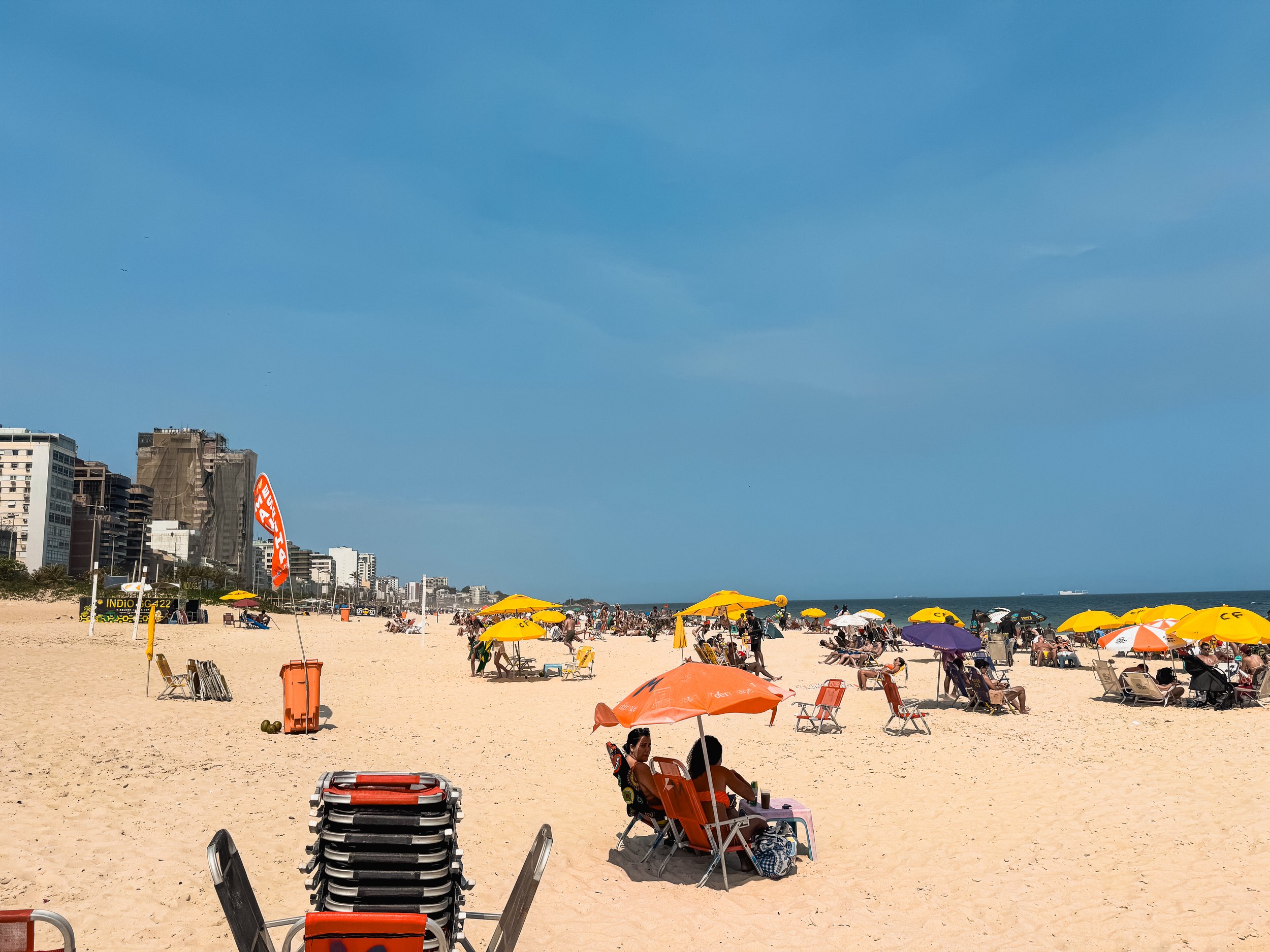
Ipanema Beach
Ipanema is known for its iconic yellow sand beach similar in many regards to Copacabana. It’s popular for swimming, surfing, foot volley and sunsets with over 100 brarrachas selling drinks, snacks and beachwear. The gays like to congregate between Barrachas 57-64. Its tiled promenade is routinely used for walking, jogging and biking and admiring the elegant architecture. The best views are looking west towards Morro Dois Irmãos.
Arpoador Rock. A rocky outcrop with trails overlooking Ipanema Beach. It’s a popular spot to watch the sunset and take surf lessons.
Leblon Beach. A continuation of Ipanema Beach west of the canal in the wealthiest neighborhood of the city.
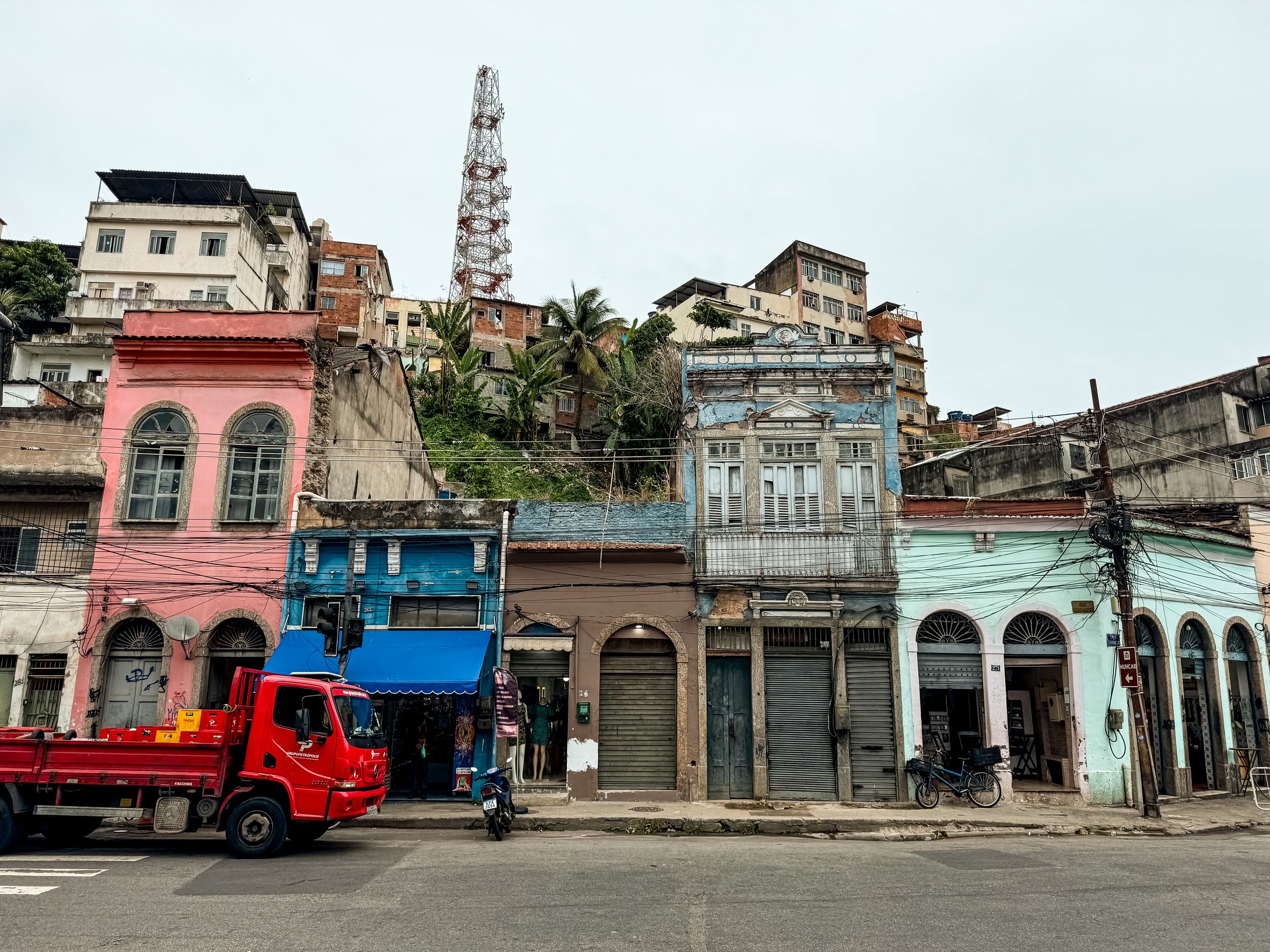
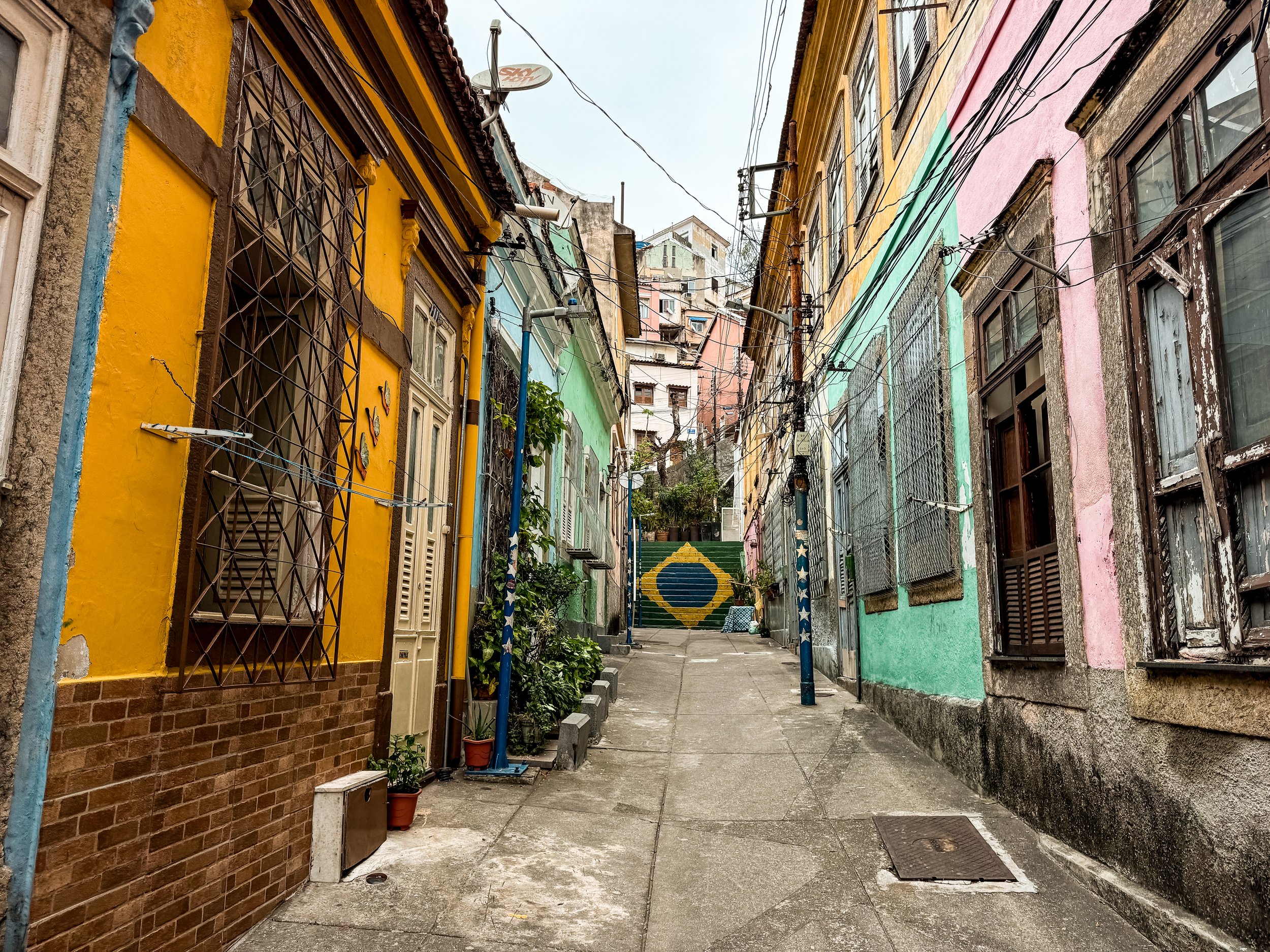
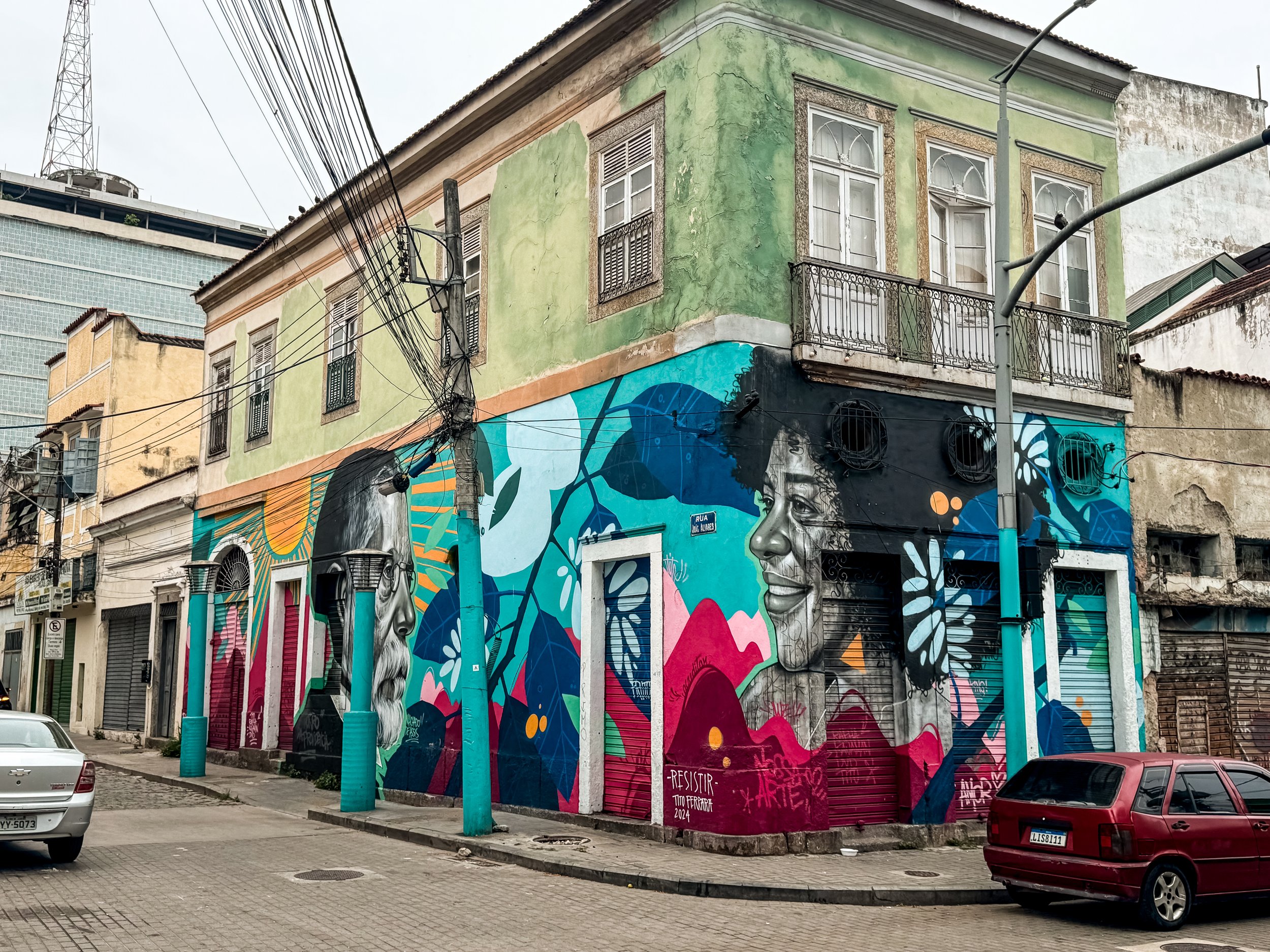
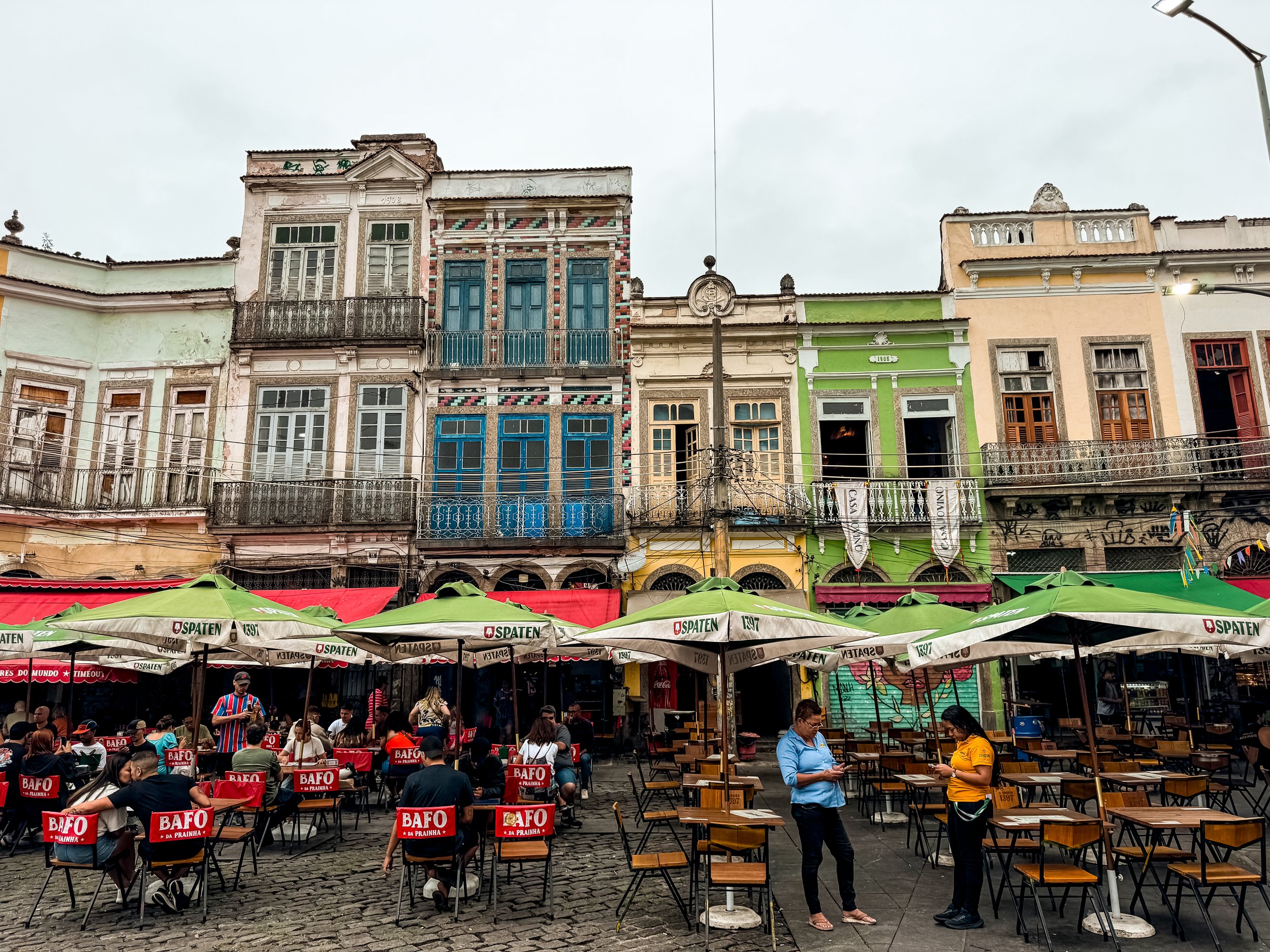
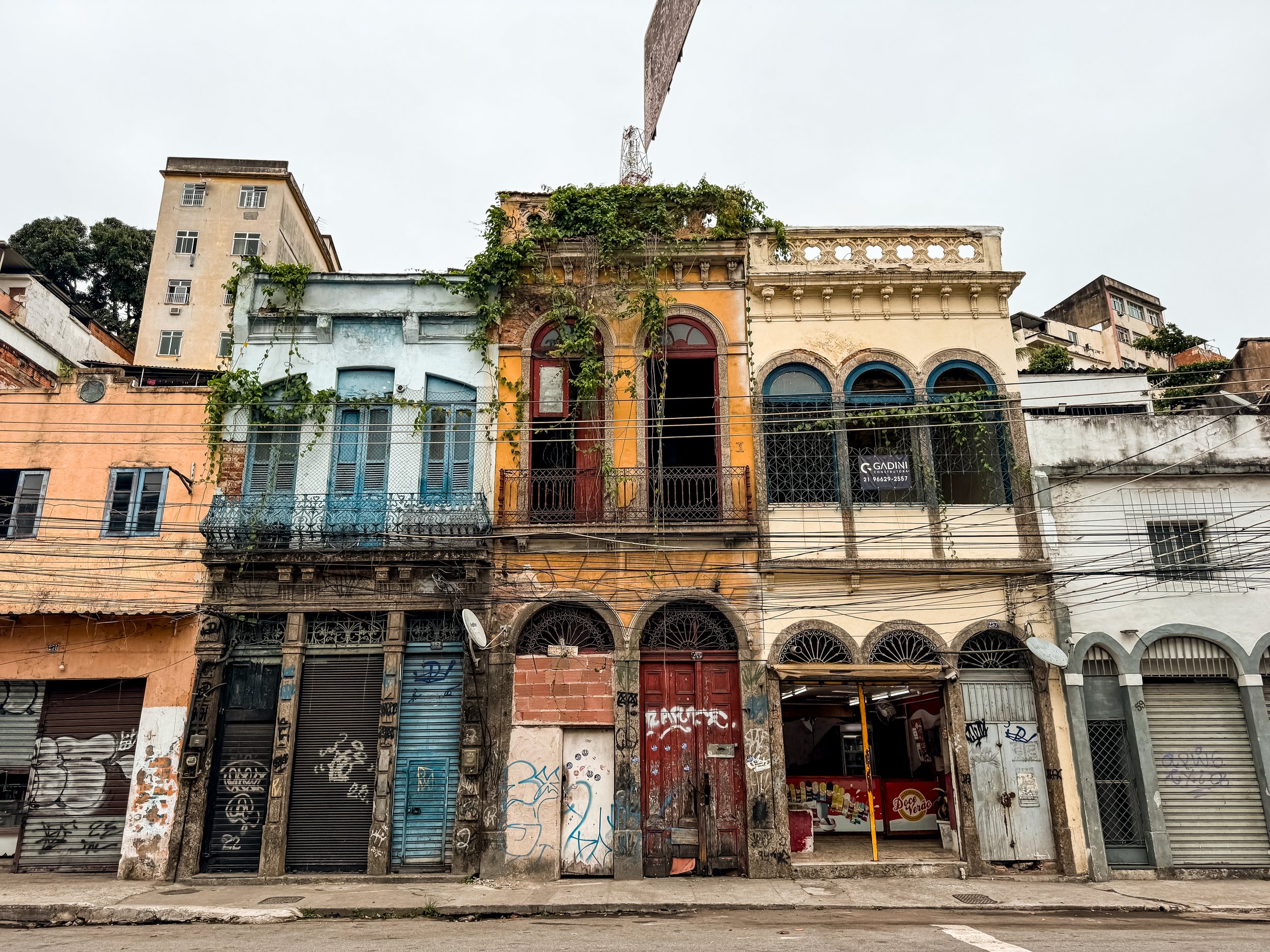
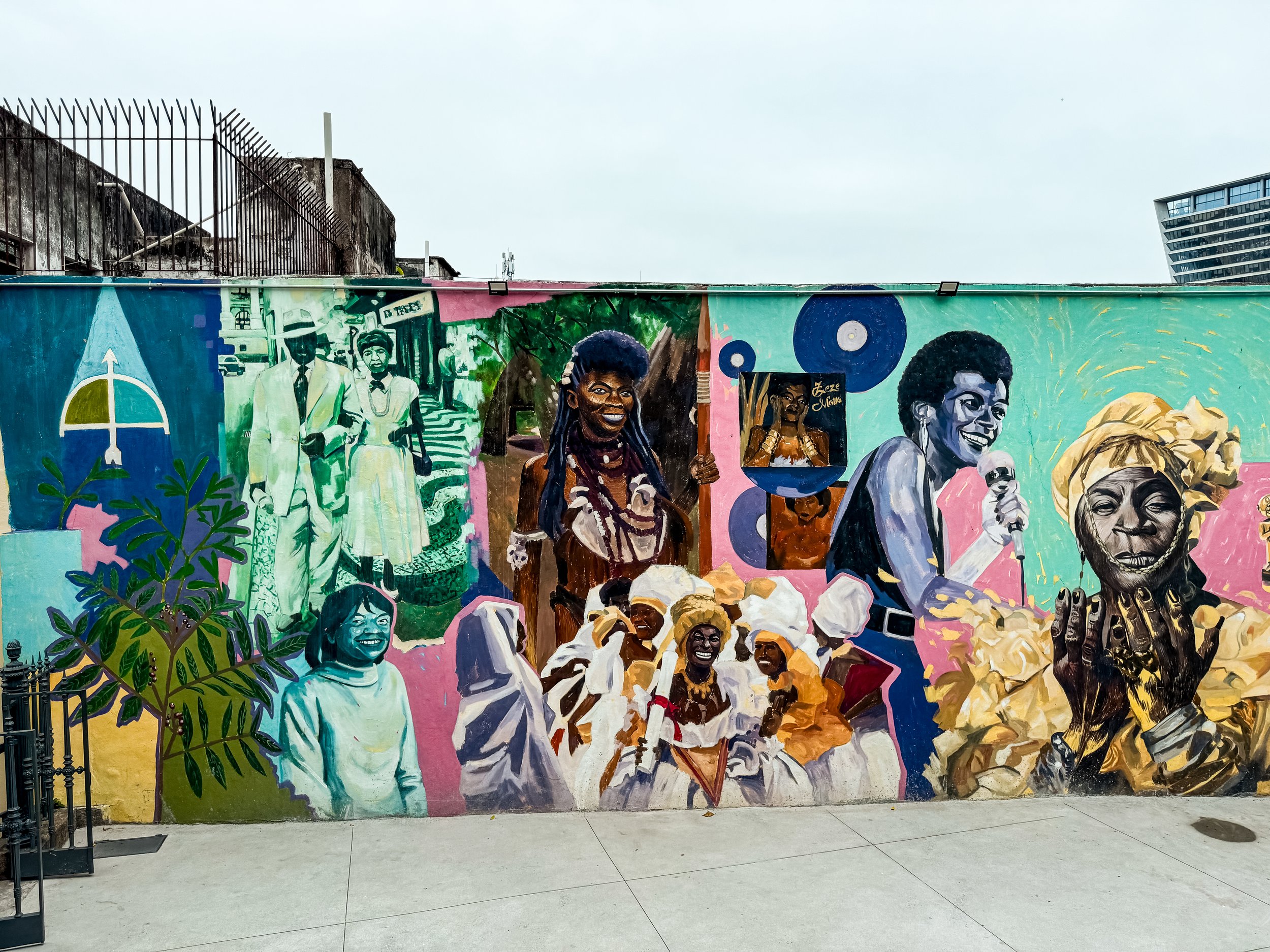
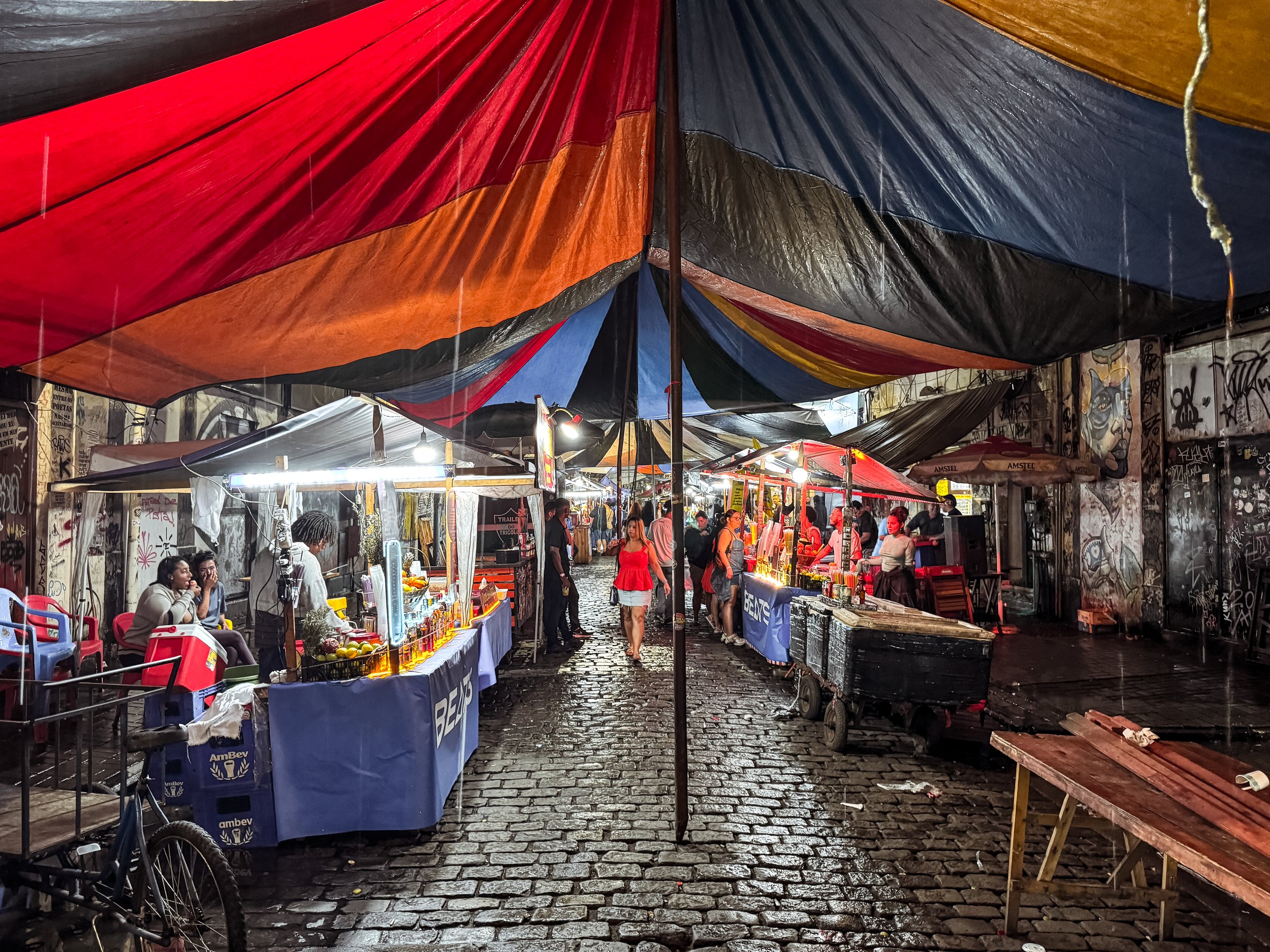
Little Africa
Little Africa is a historic neighborhood home to a large Afro-Brazilian population, many of which are the descendants of enslaved Africans brought to Brazil. Come here to learn about the neighborhood’s history, see the quilombos (favelas), admire the street art and dance to live Samba music.
Museu da História e da Cultura Afro-Brasileira (MUHCAB). Located in Little Africa, this museum is dedicated to Afro-Brazilian history and culture with exhibits on African enslavement, to emancipation and modern day. The museum features artwork, sculptures, textiles, artifacts and Samba music.
Pedra do Sal. Considered the birthplace of Samba, this historic spot in Rio’s Little Africa is home to a nightly party with live Samba music. Under the cover of a colorful tent, the street has an electric atmosphere with feeling for Favela culture. Music emanates between buildings as people dance in the street and sing along in unison. The street is lined with bar carts serving strong caipirinhas and restaurants selling Brazilian snacks. The party starts at sunset and continues into the early morning with Monday and Friday being the liveliest nights.
Escada da Bandeira do Brasil. A small staircase painted in the Brazilian flag at the end of a historic alleyway.
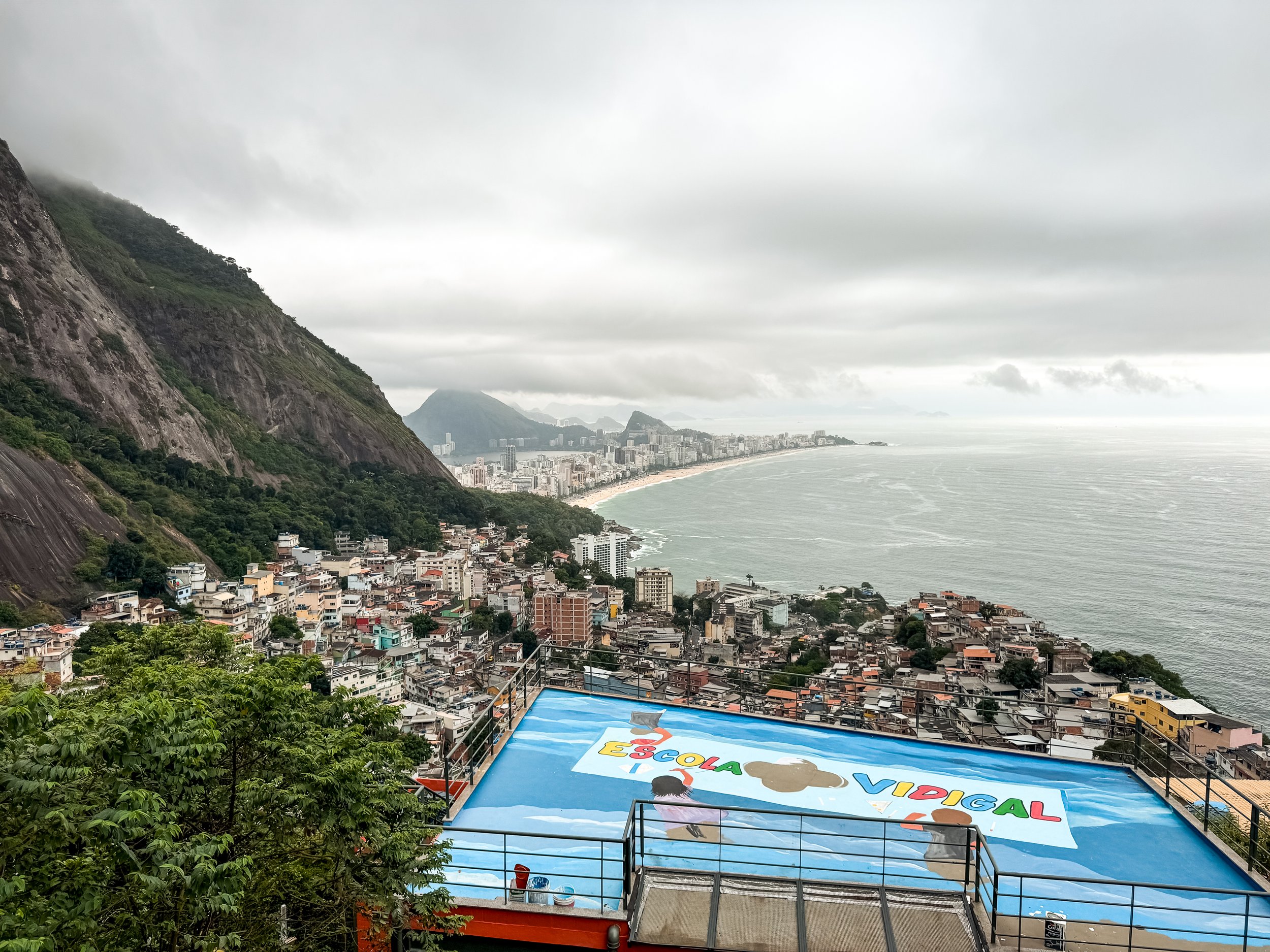
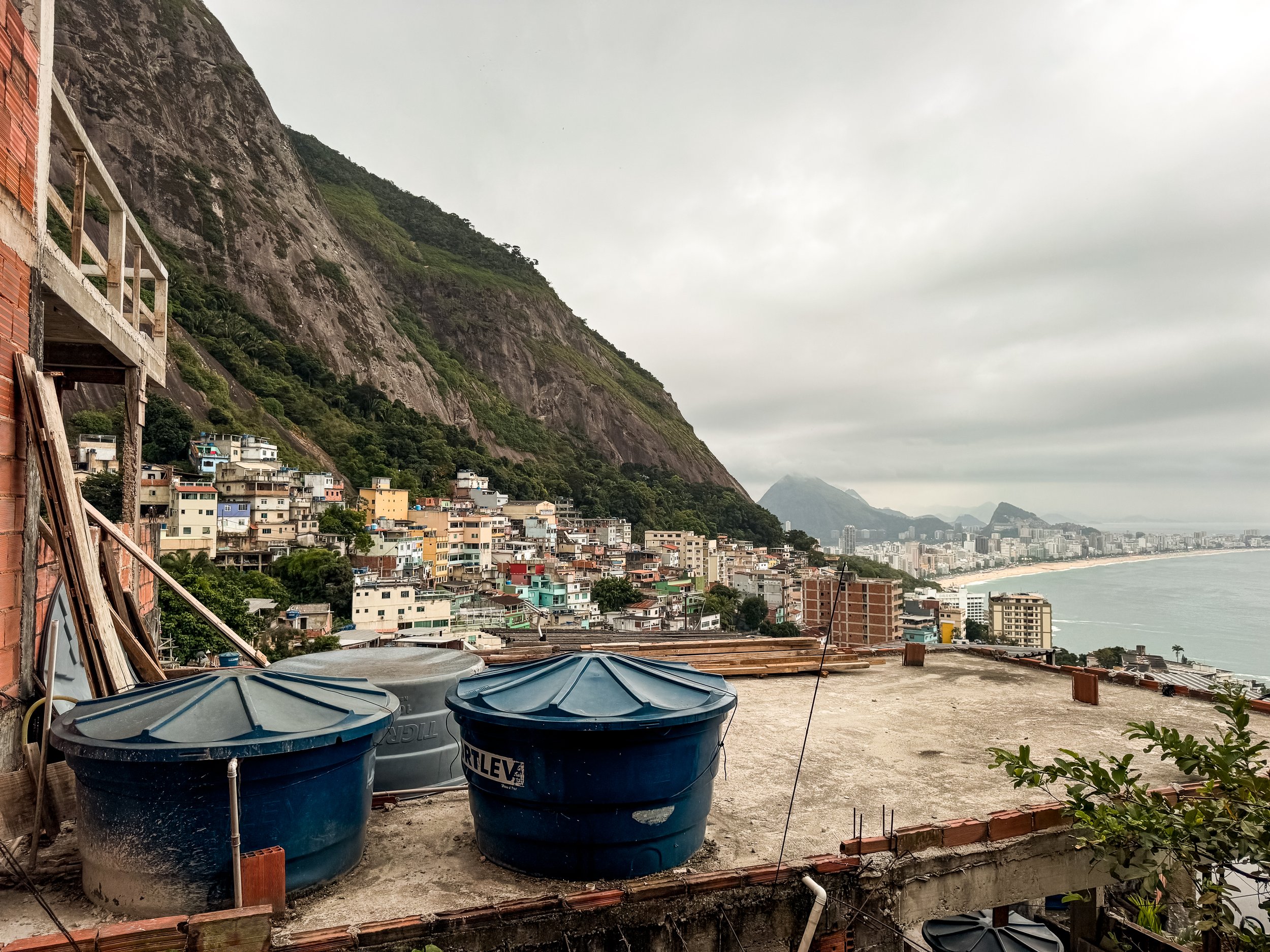

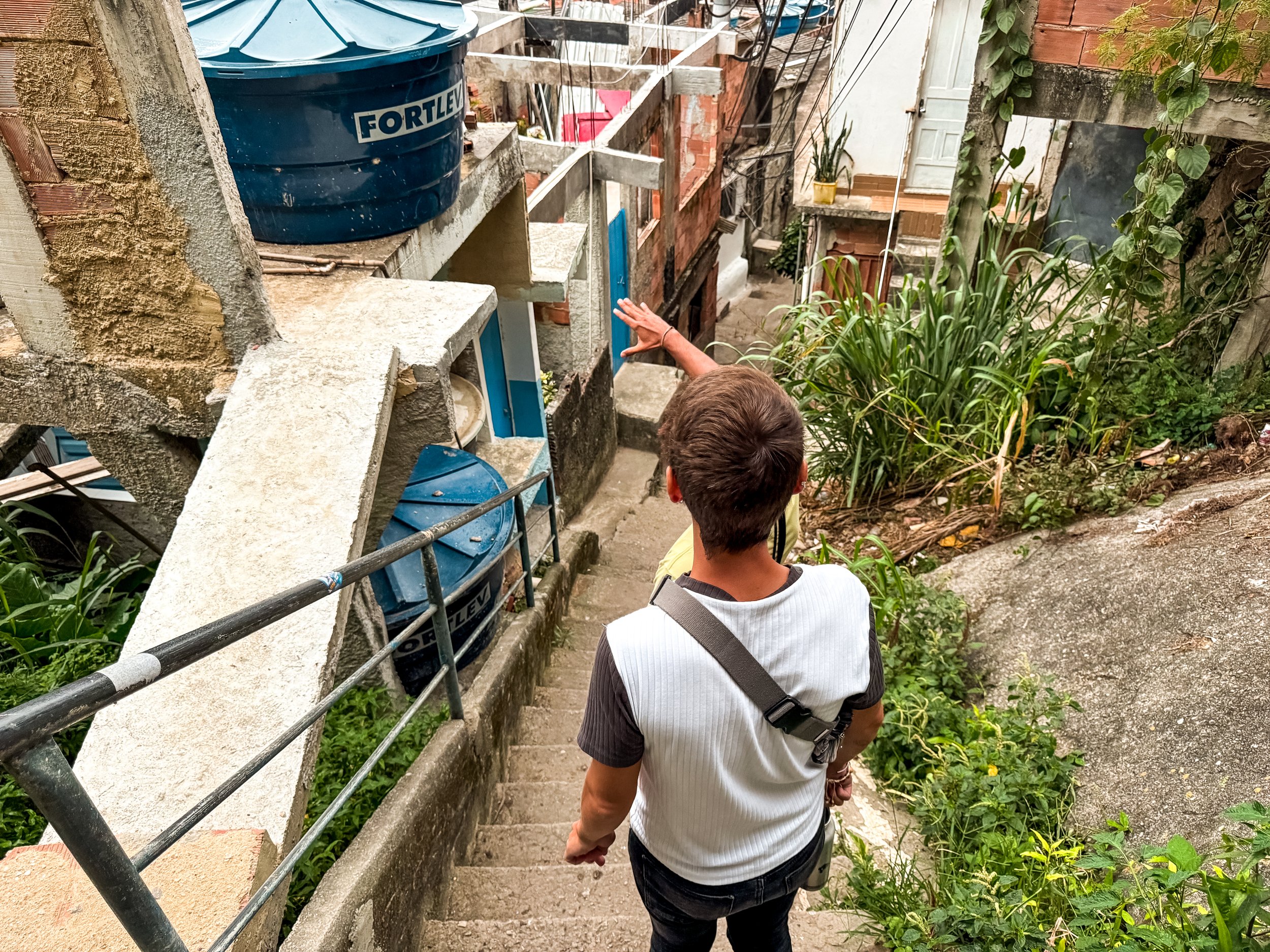
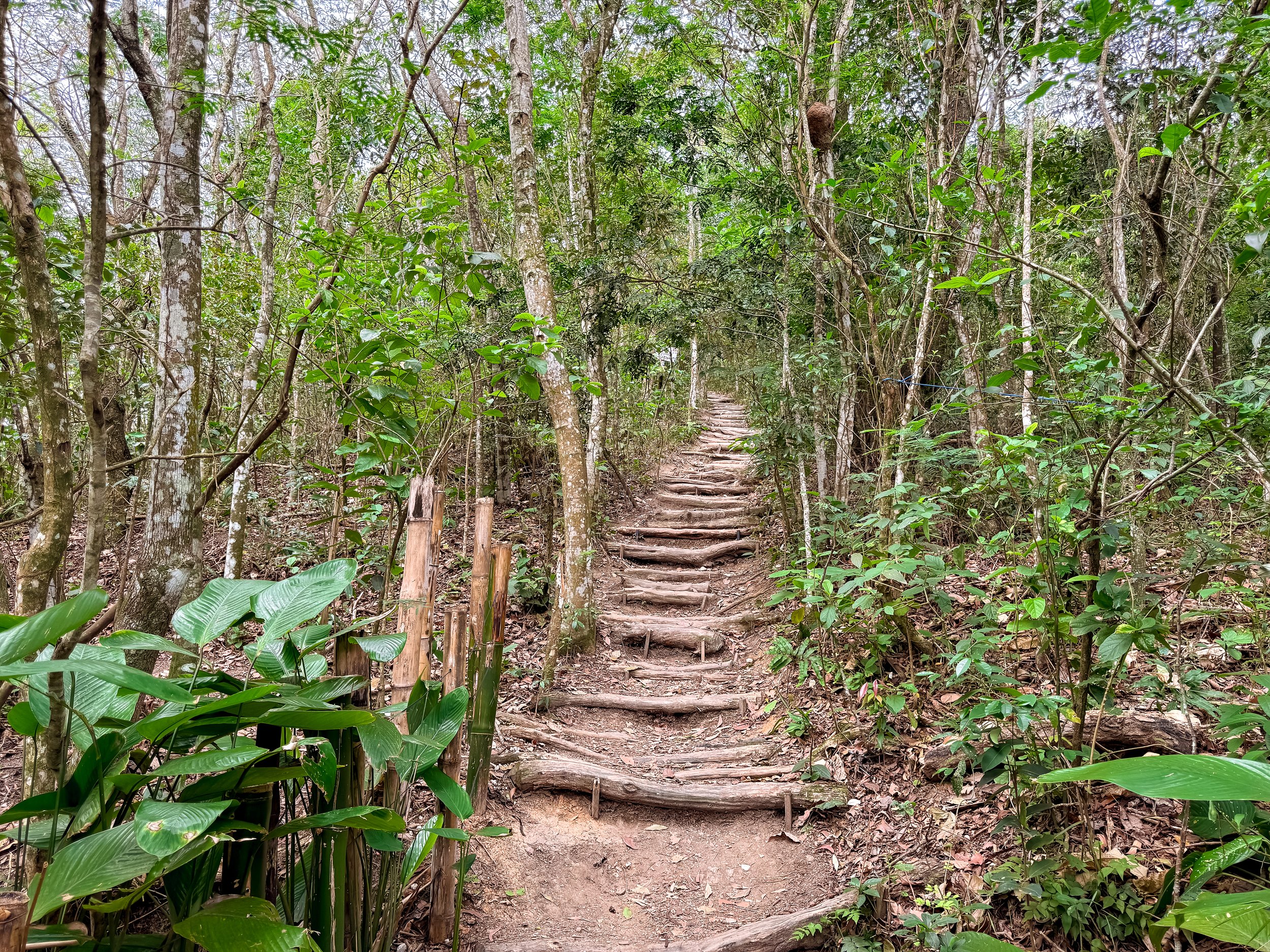
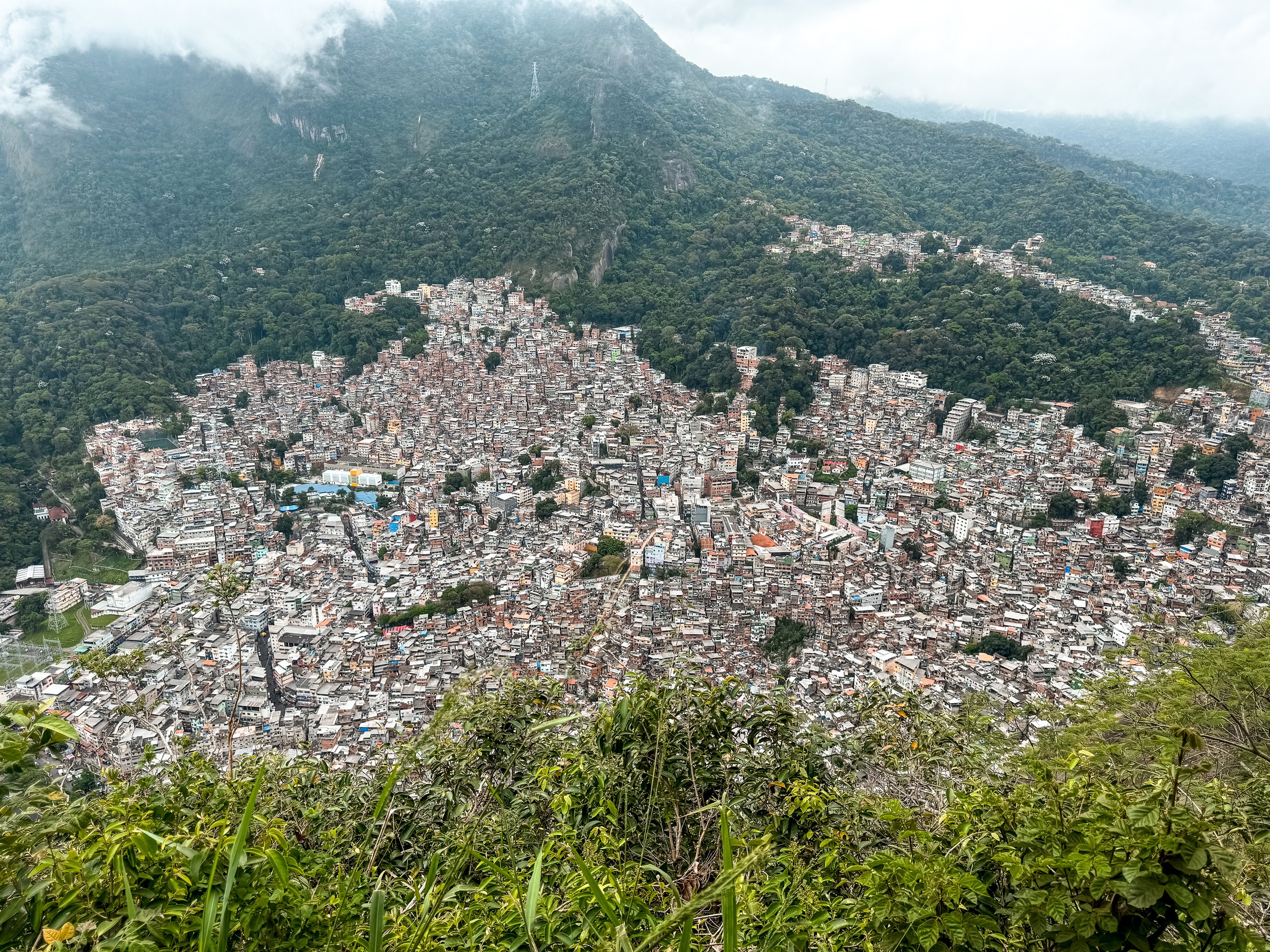
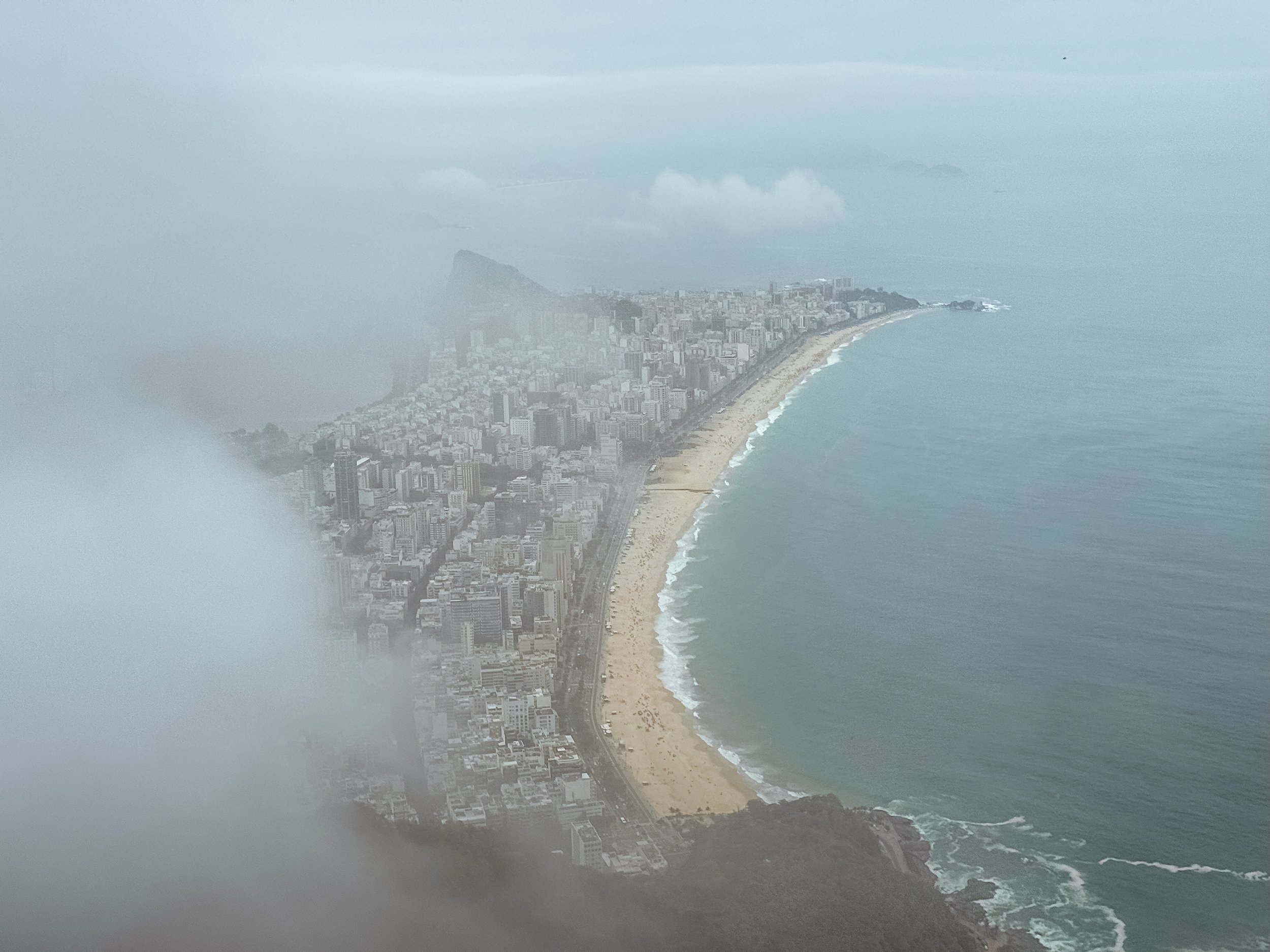
Vidigal Favela
Vidigal is a favela built on the side of the Morro Dois Irmaos. It’s the ‘safest’ of the favelas in Rio and welcoming of tourists with guided tours. We visited with a local guide who toured us through the favela, showed us how people live and explained its history with gangs and government “pacification.”
Vidigal is a densely populated community with narrow winding walkways, steep staircases and unfinished houses built on the hill in very close proximity to each other. The main road through the favela has all the businesses you would typically see in a neighborhood including grocery stores, restaurants, bars, auto shops, churches, laundry mats, a health clinic and post office. The upper area of the favéla has a black market, rooftop bars and outdoor patios overlooking it and Ipanema. We stopped at one for a cold beer while enjoying the view.
The favela is “pacified” by the police but controlled by the Comando Vermelho gang. Their gang sign, CV, was gratified everywhere in the favela while gang members carrying assault rifles were omnipresent. Though we didn’t feel unsafe, it was good to have a guide helping us navigate through a traditionally unsafe community.
Morro Dois Irmaos. A mountain with twin granite peaks known as “The Two Brothers.” The mountain has hiking trails with views of Rio’s largest favela, Rocinha and of Ipanema Beach from the summit.
We took moto-taxis through the Vidigal Favela to reach the trail head. The trail led up rustic stairs until reaching a view of Rocinha. Along the way, we spotted a family of capuchin monkeys feating on jack fruit in a tree. We hiked even further up the dirt trail until reaching the summit of “Big Brother” where we were fully in the clouds. After waiting around, we got to see glimpses of Ipanema beach through brief clearings. Book here!
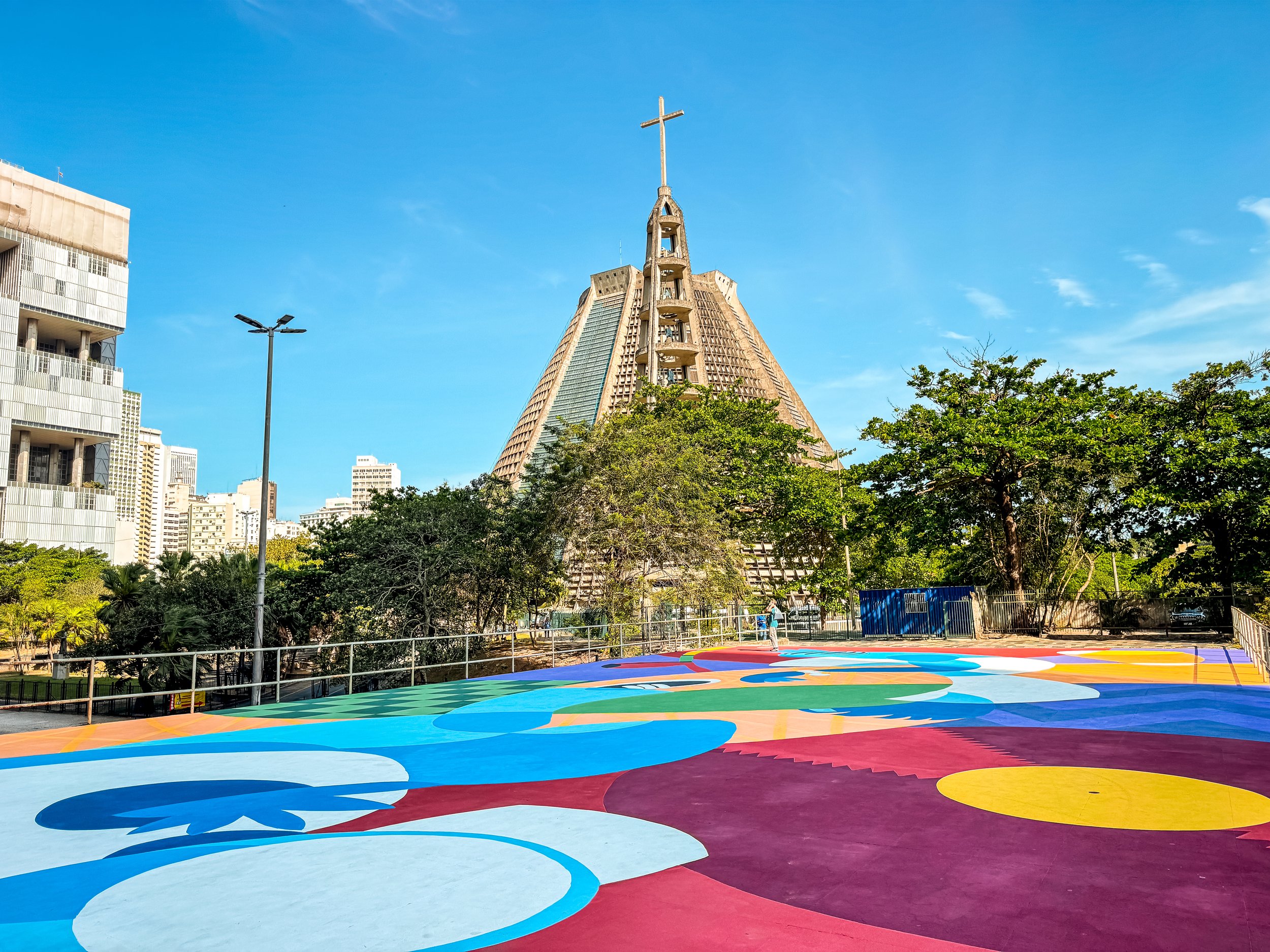
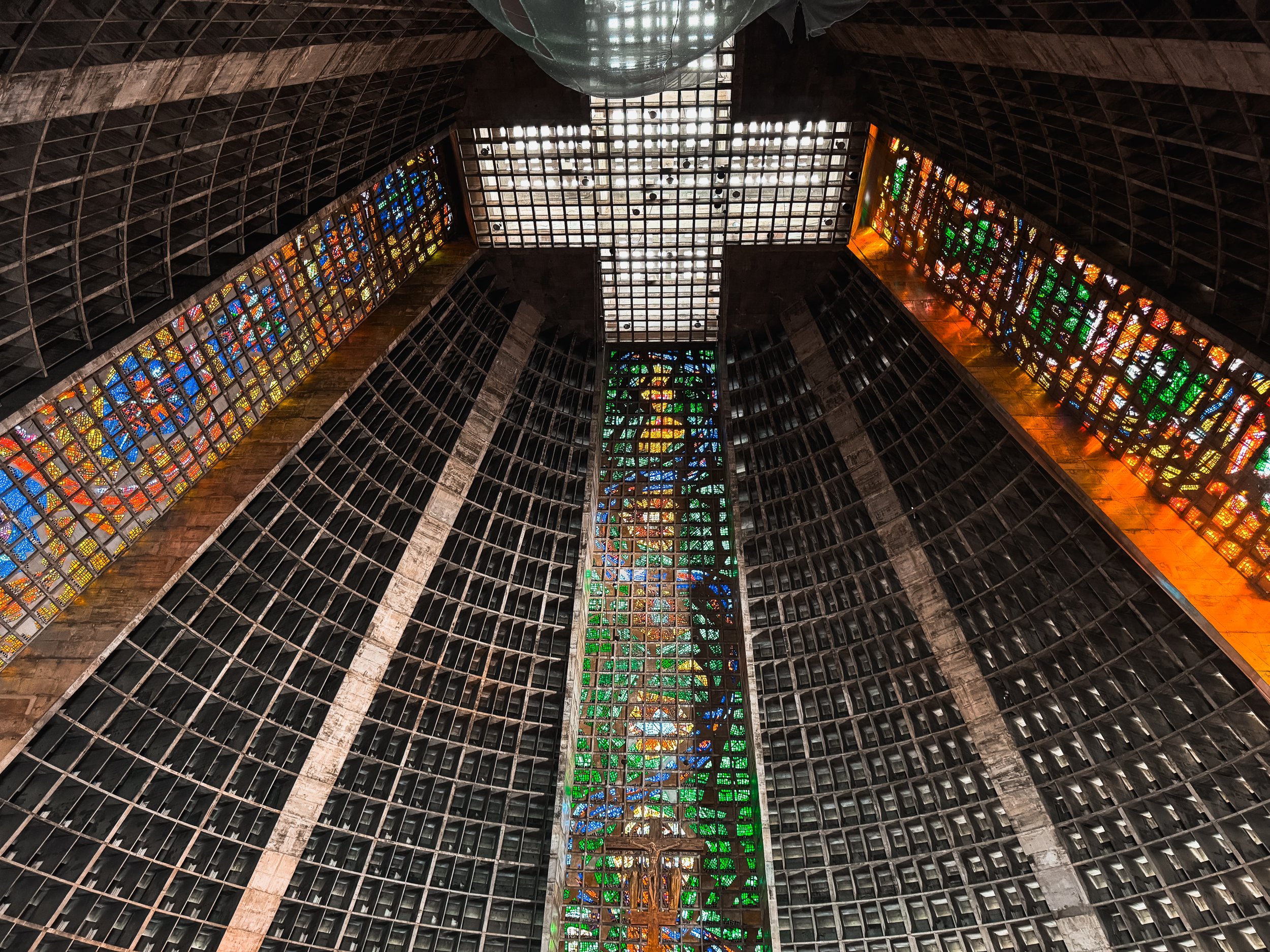
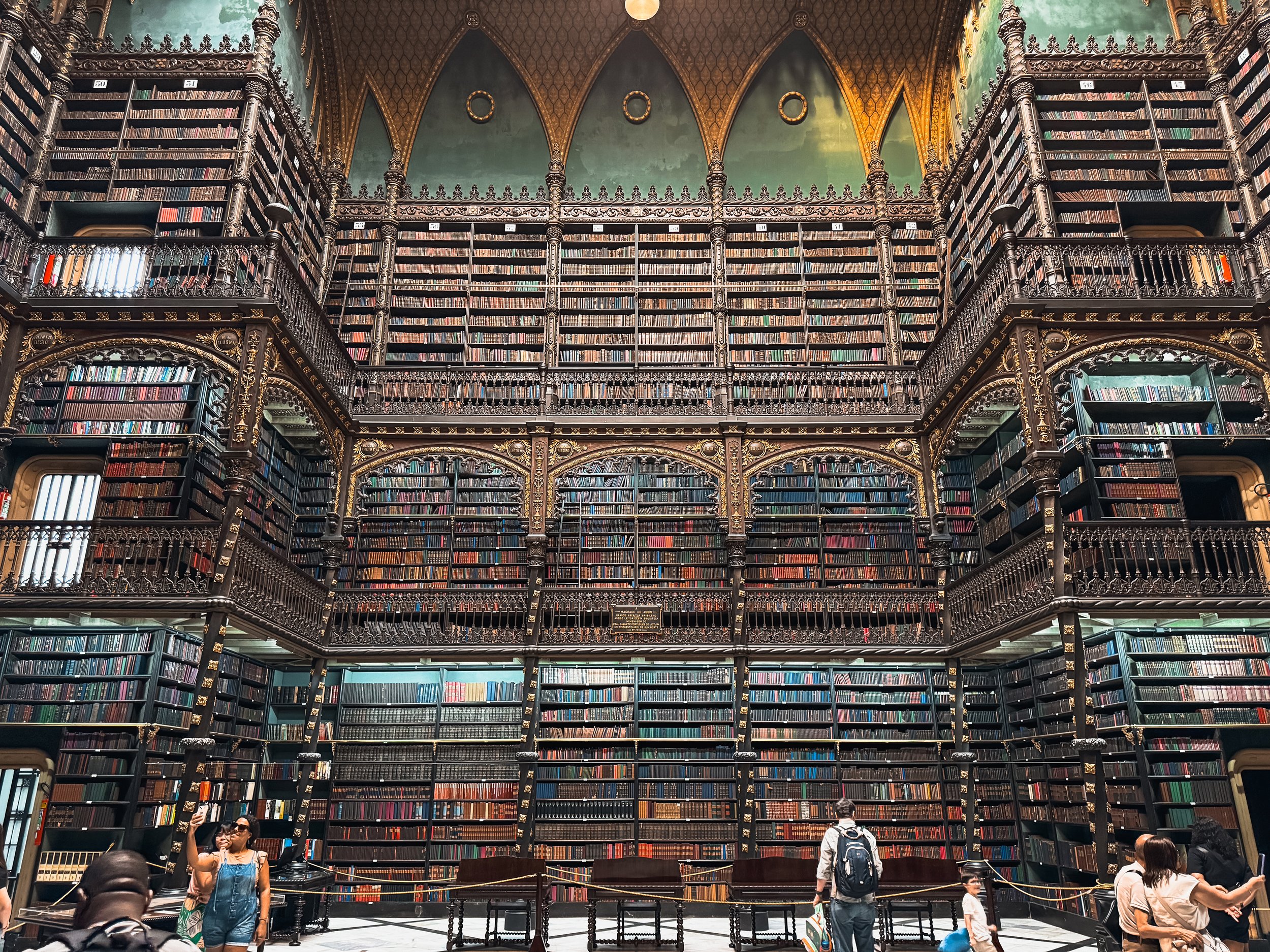
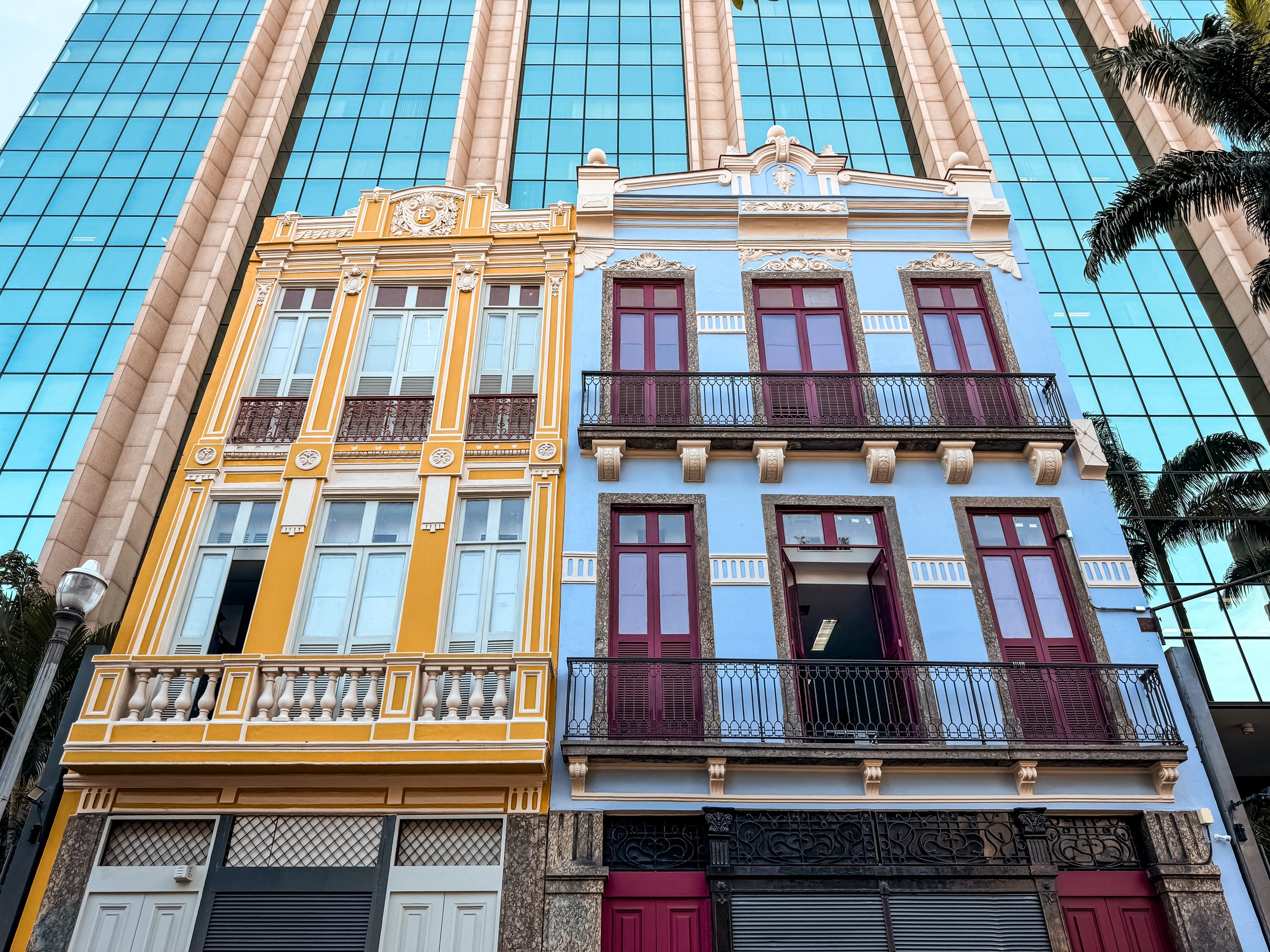
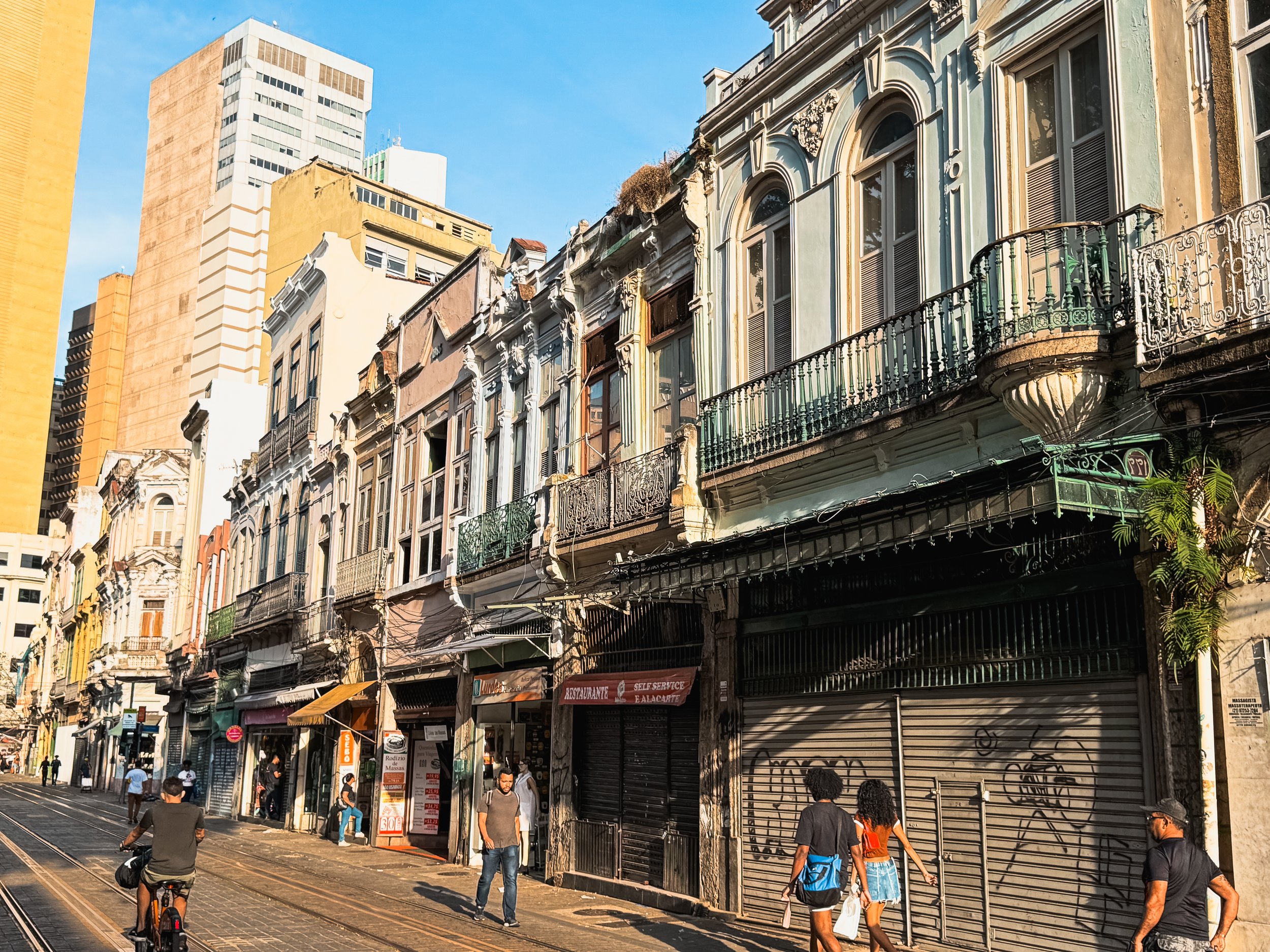
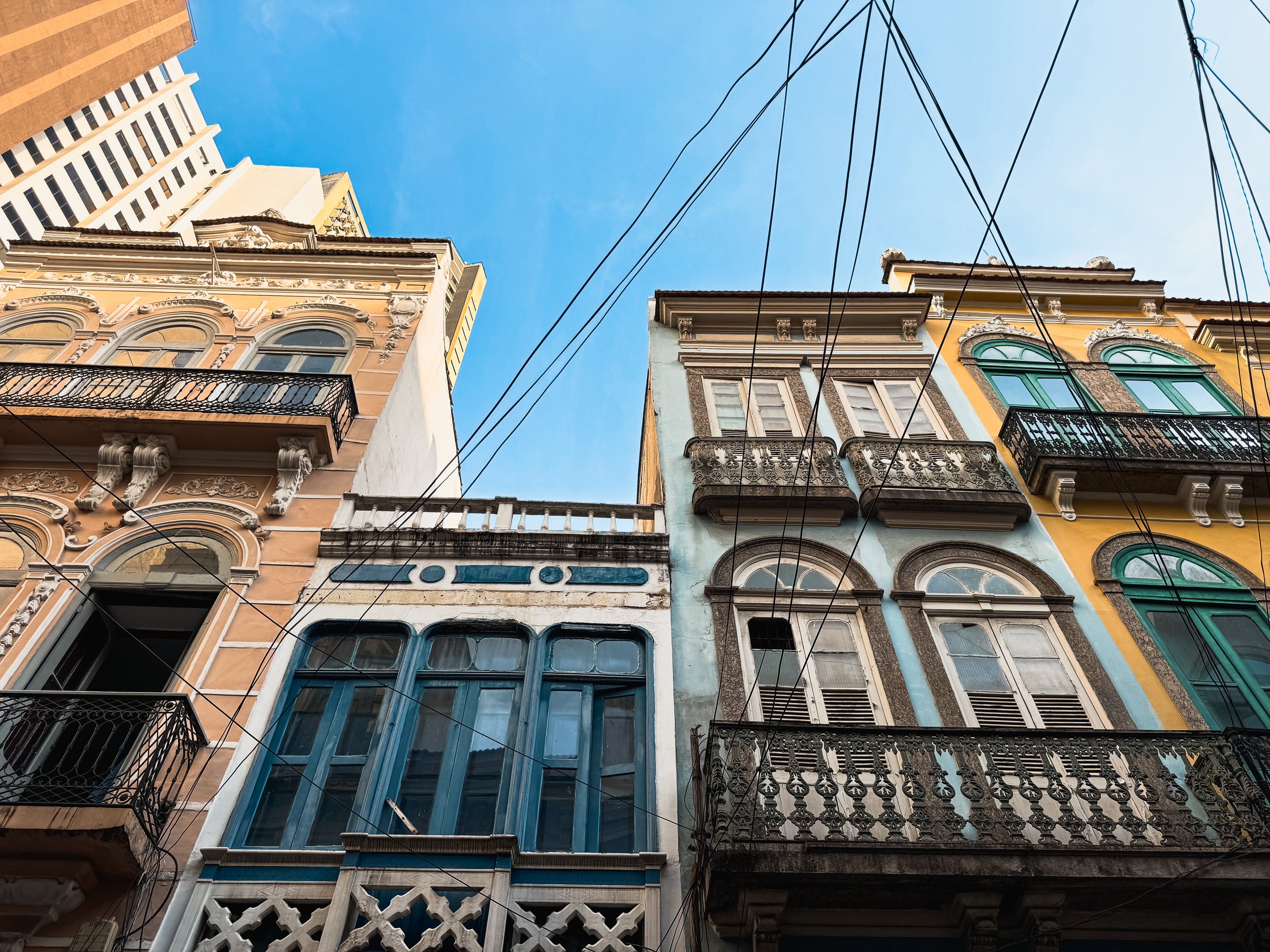

El Centro
El Centro is the central neighborhood of Rio is the historic and cultural hub of the city known for its architecture, museums and plazas. We spent time walking around the neighborhood, following the patterns of tiny black and white stones laid into the sidewalks. Narrow cobble stone streets are lined with ornate historic buildings and wide avenues with modern skyscrapers and elegant neo-classical landmarks.
Museu de Art do Rio. A contemporary art museum with galleries dedicated to local artists. We visited during their main exhibit on Funk music. The exhibit was laid out in two parts. One related to the historical context of Funk going back to black artists from the 70s. The second, depicting contemporary Funk music in favelas.
Museu di Amanda (Museum of Tomorrow). A beautiful, insightful, thought provoking and at times overwhelming museum dedicated to Earth and humanity. Through a series of interactive, descriptive and digital exhibits, the museum builds empathy and connects us as individuals to each other, the planet and our future.
The museum explains our understanding of the Cosmos and Earth’s place it while highlighting the planet’s natural systems, ecology and biodiversity. Reflecting on humanity, an exhibit depicts what it means to be human and connects different culture’s uniqueness and similarities through photography. Continuing with an exhibit of The Anthropocene and human impacts on the planet through statistics related to overconsumption, population growth, human led degradation and the planet’s inability to keep up. The museum ends, leaving us with a choice of how to move forward as individuals and a civilization.
Royal Portuguese Reading Room. A gothic style library with a central atrium surrounded by multiple levels and walls of vertically stacked of antique Portuguese books.
Metropolitan Cathedral. A brutalist concrete cathedral shaped like a cone with 4 vertical stripes of colorful stained glass meeting at a clear cross in the cathedral’s ceiling.
Municipal Theater. An elegant theater with a domed roof, stone exterior, golden statues and bronze moldings.
Praça Quinze de Novembro. A plaza in the central neighborhood with stately neoclassical buildings.
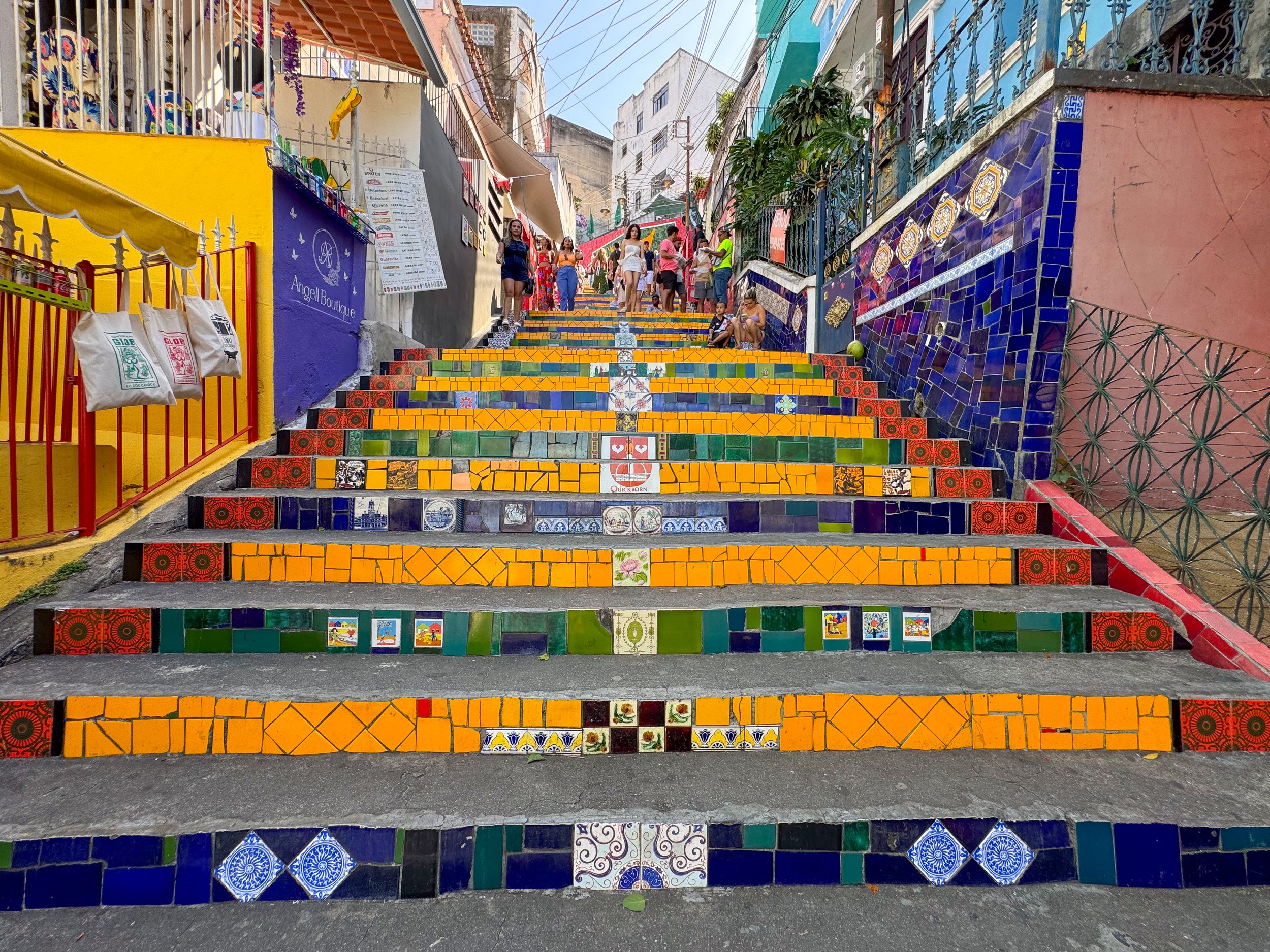
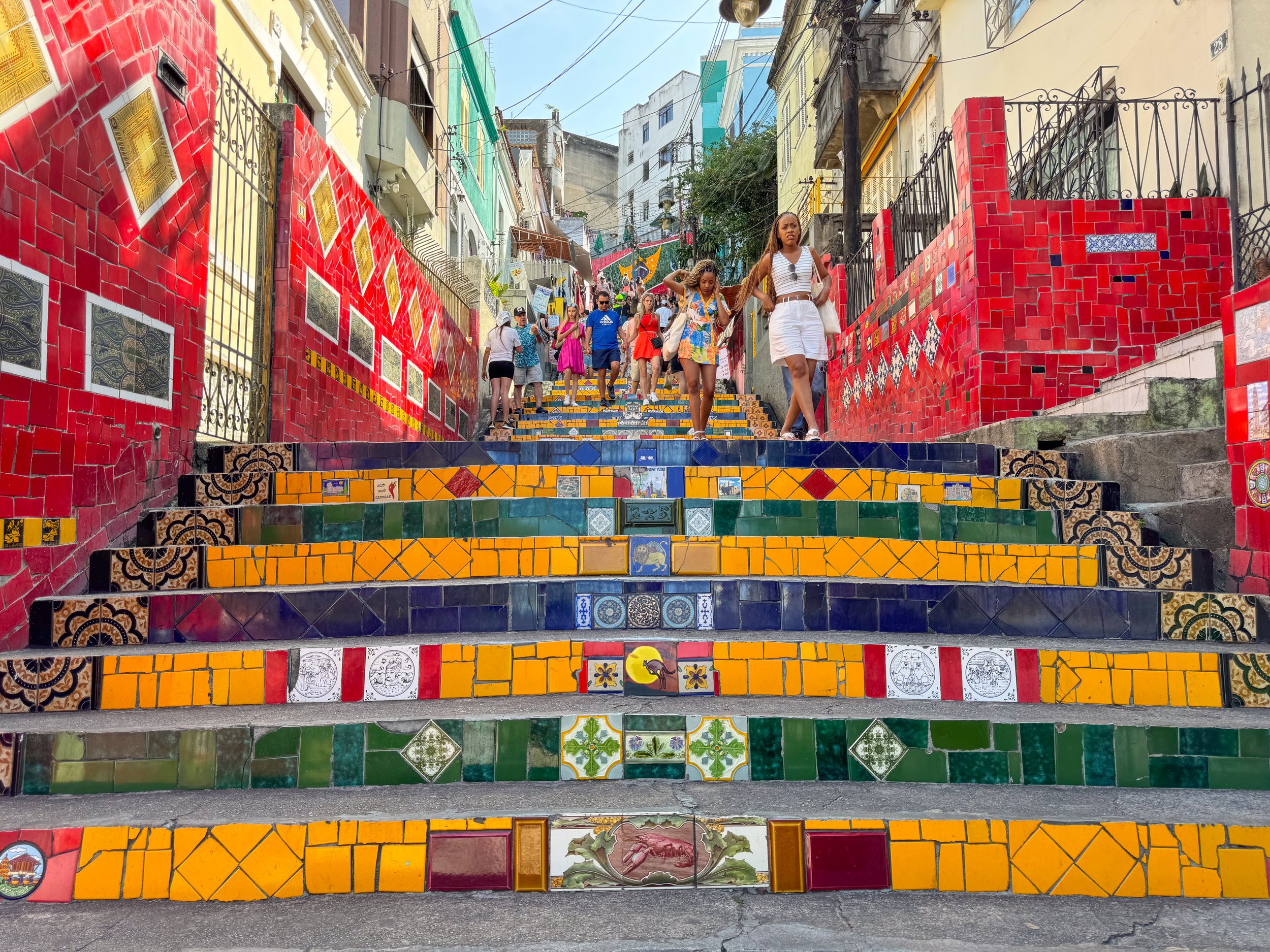
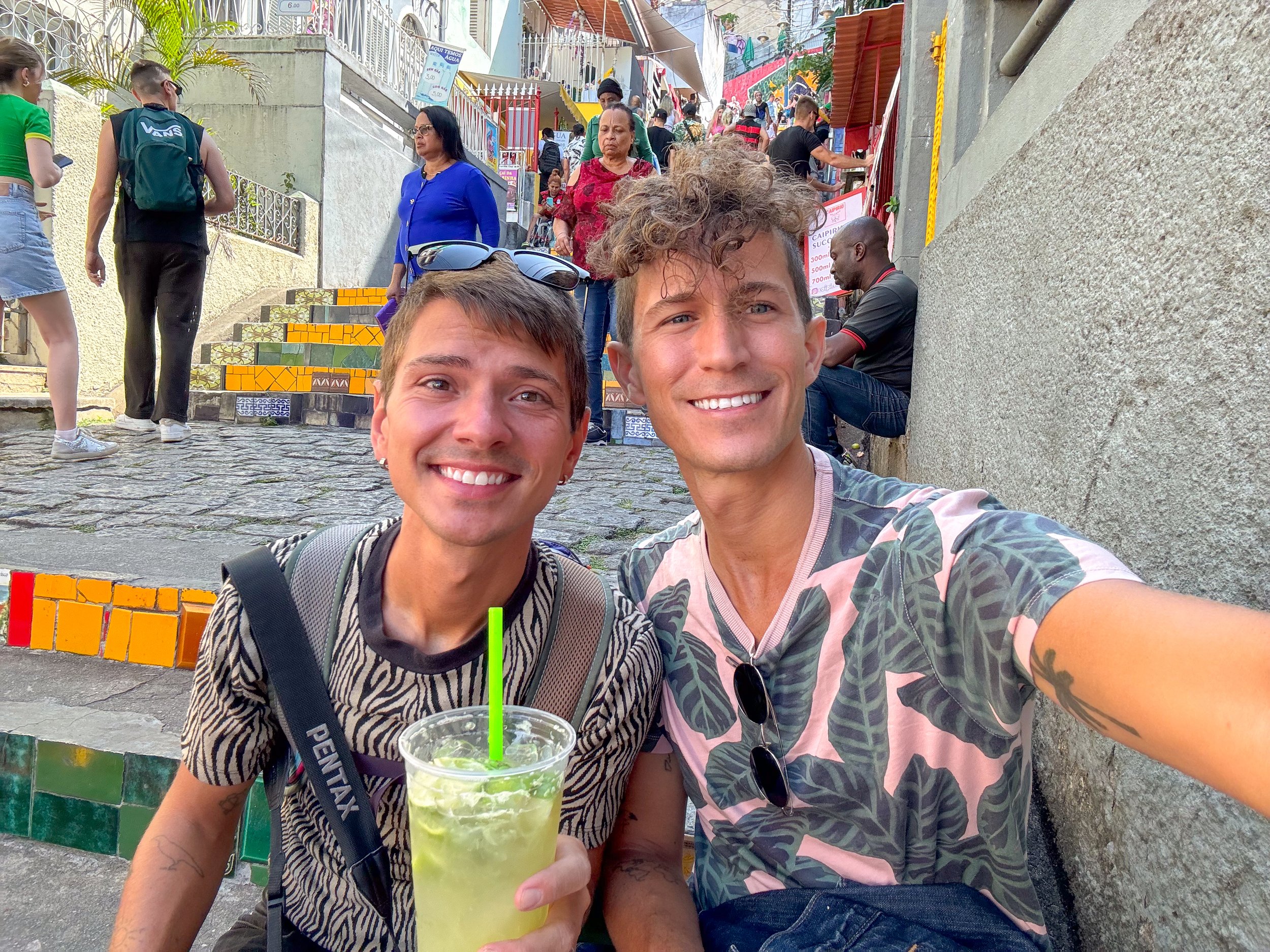
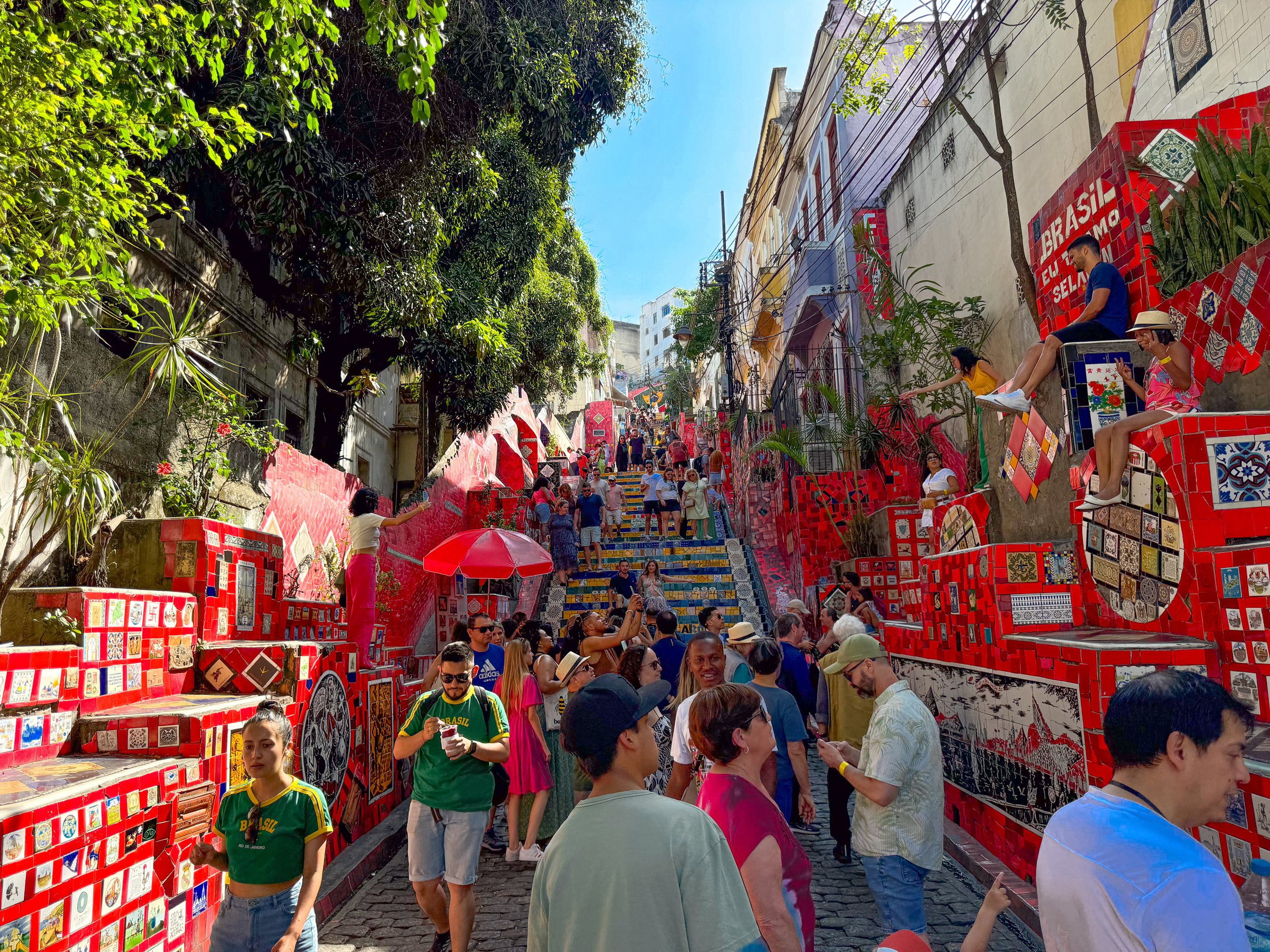
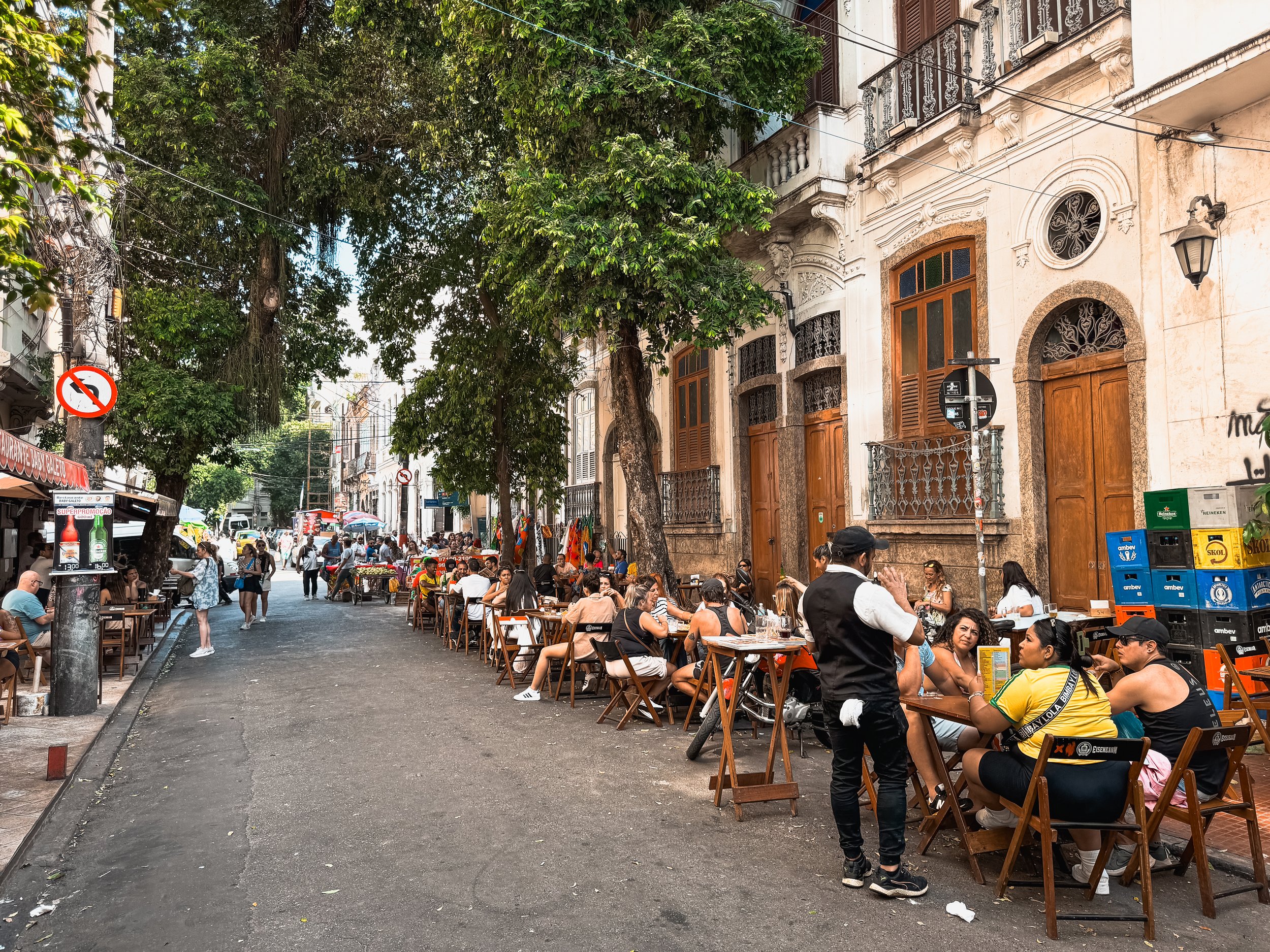


Lapa
Lapa is small but central neighborhood known for its nightlife, street art and the Escadaria Selarón. The neighborhood can be a bit dicy during the daytime and we suspect even more so at nighttime.
Escadaria Selarón. A beautiful mosaic tiled staircase in the Lapa neighborhood. It’s a very popular selfie spot with many tourists walking up the stairs and posing for photos. There are vendors selling caipirinhas from their homes. We ordered a large one for R$8, sat on the steps and people watched. At its base is a street lined with bars, restaurants and murals.
Arcos da Lapa. A white arched aqueduct converted into part of the Santa Teresa Tram route. There are many homeless people sleeping under the arches.
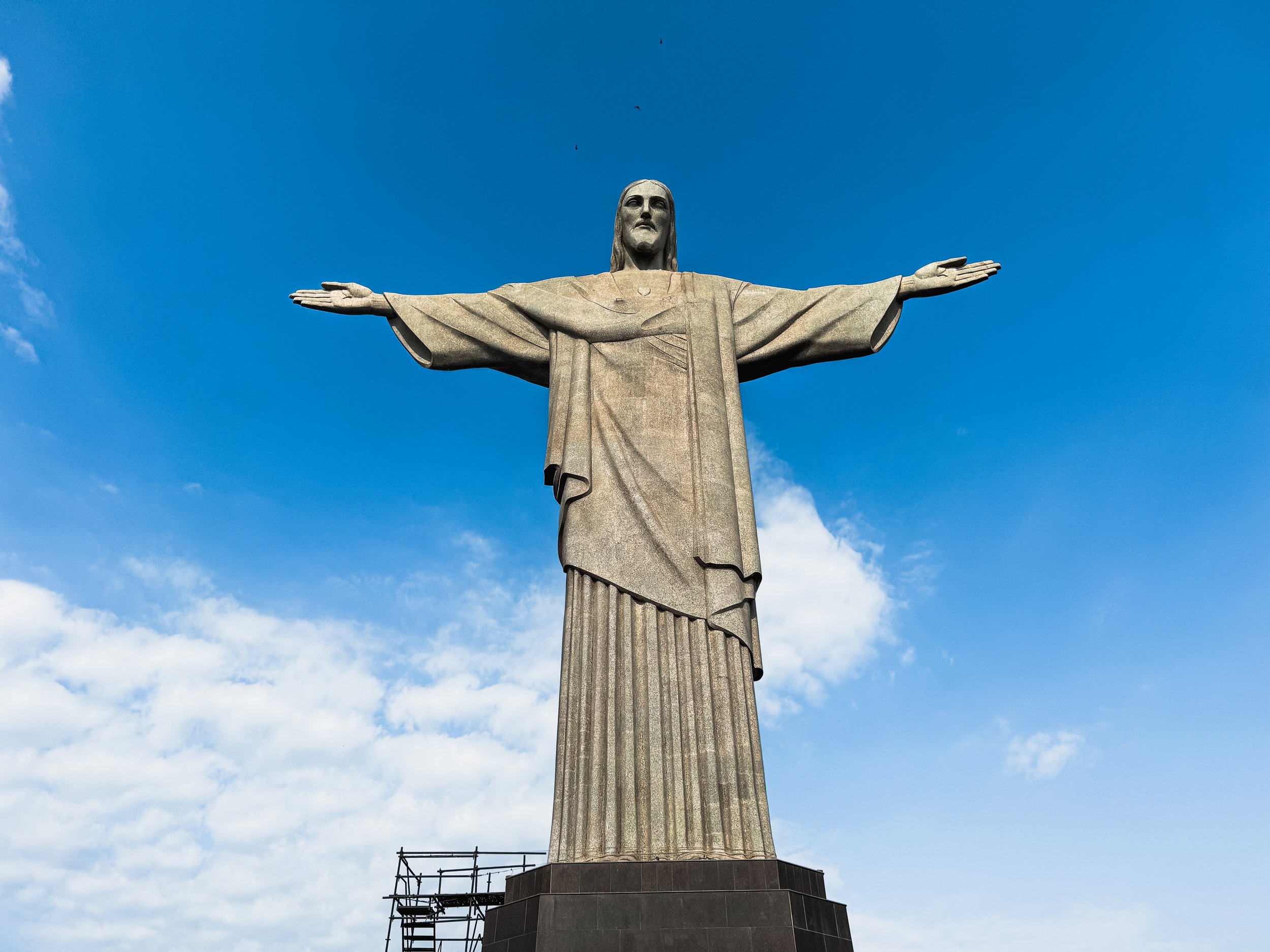
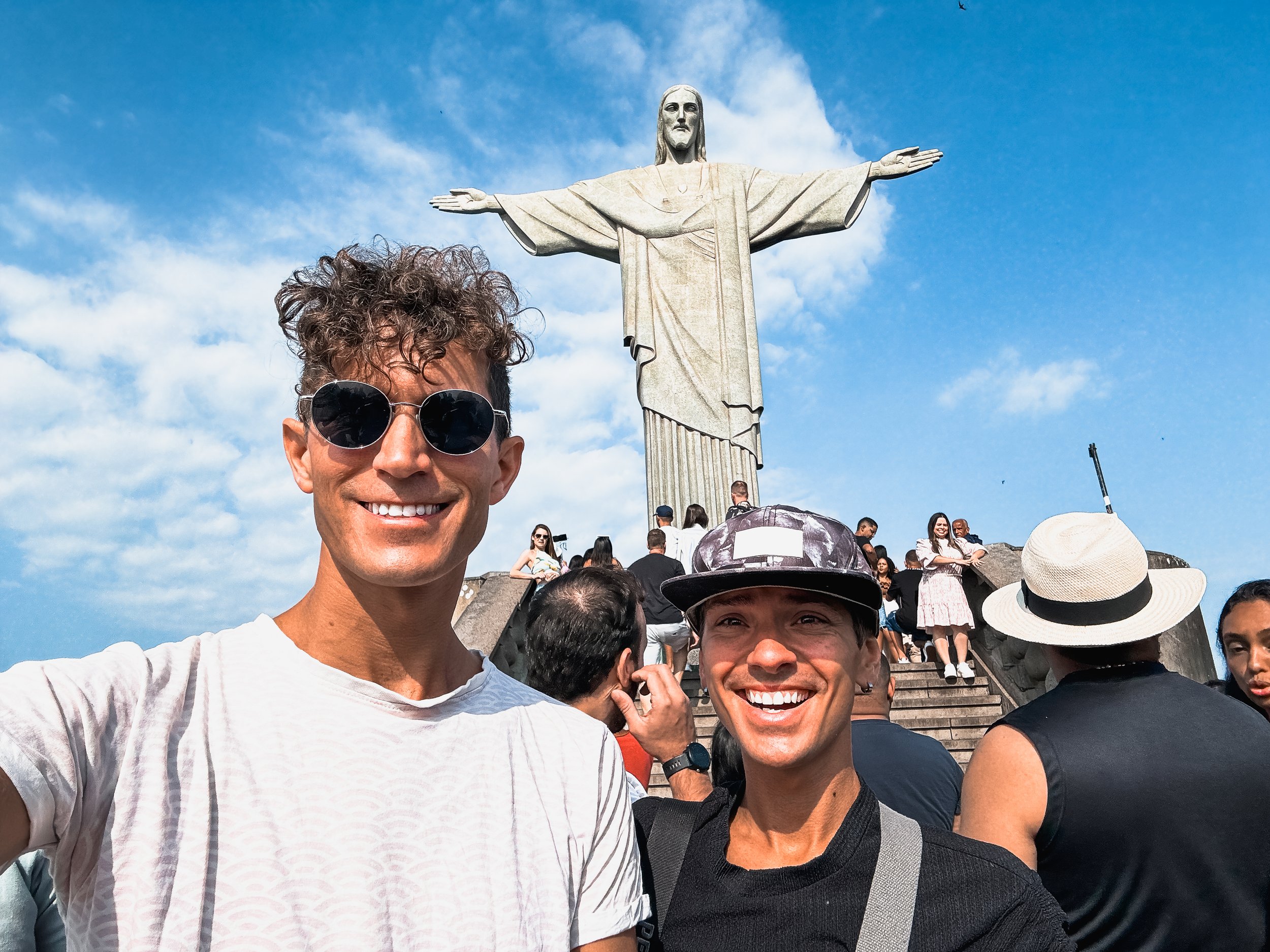
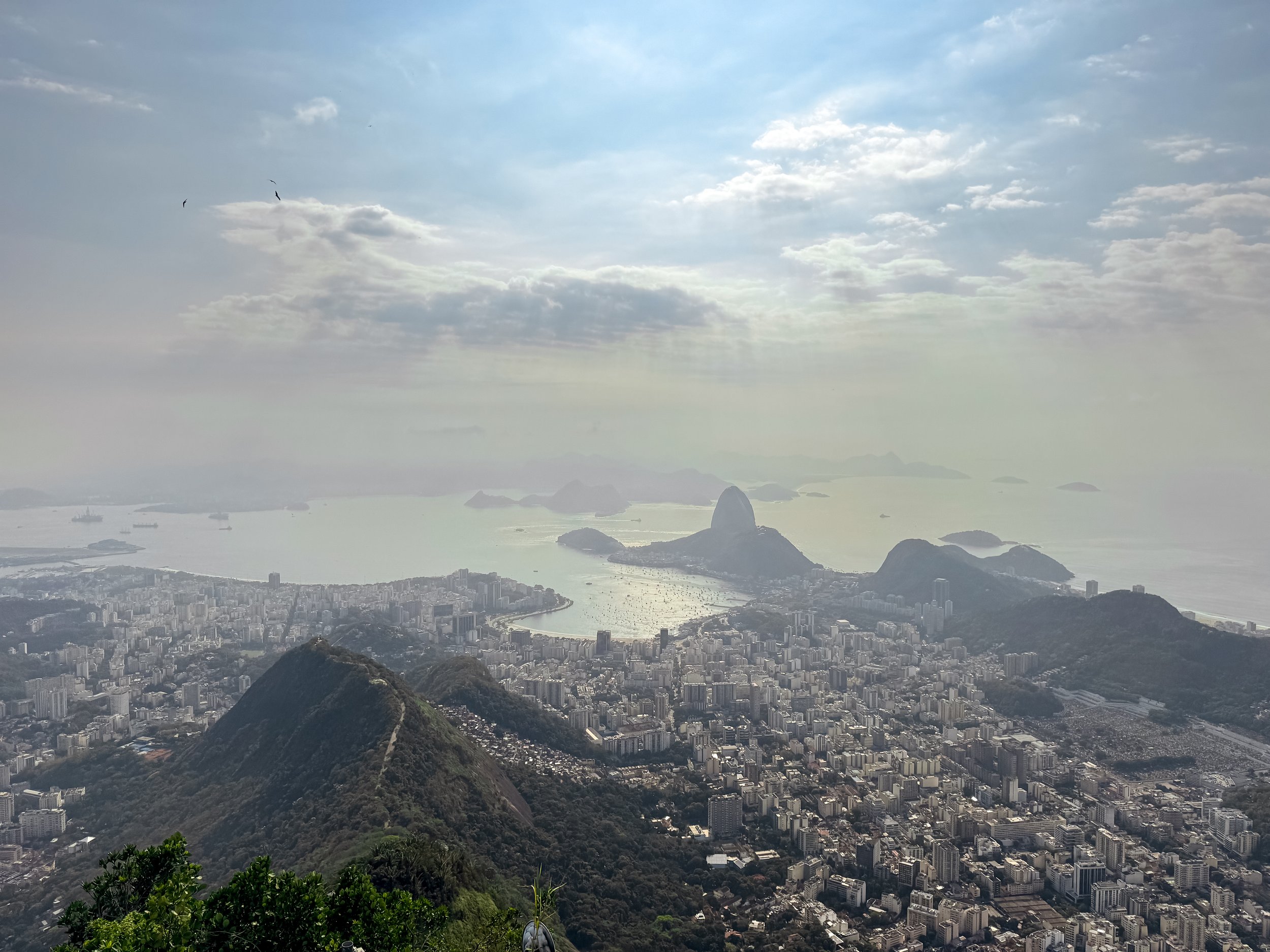
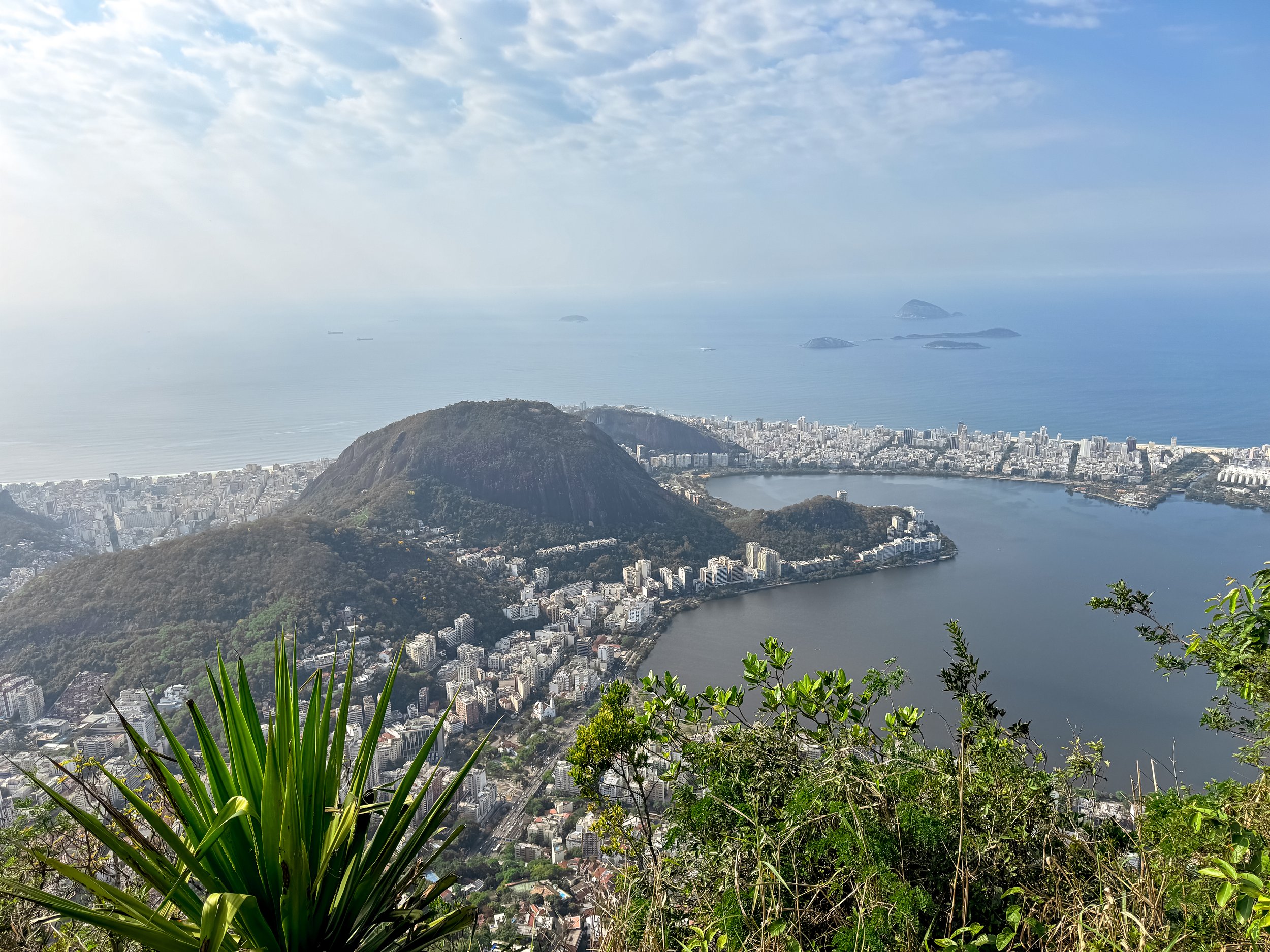
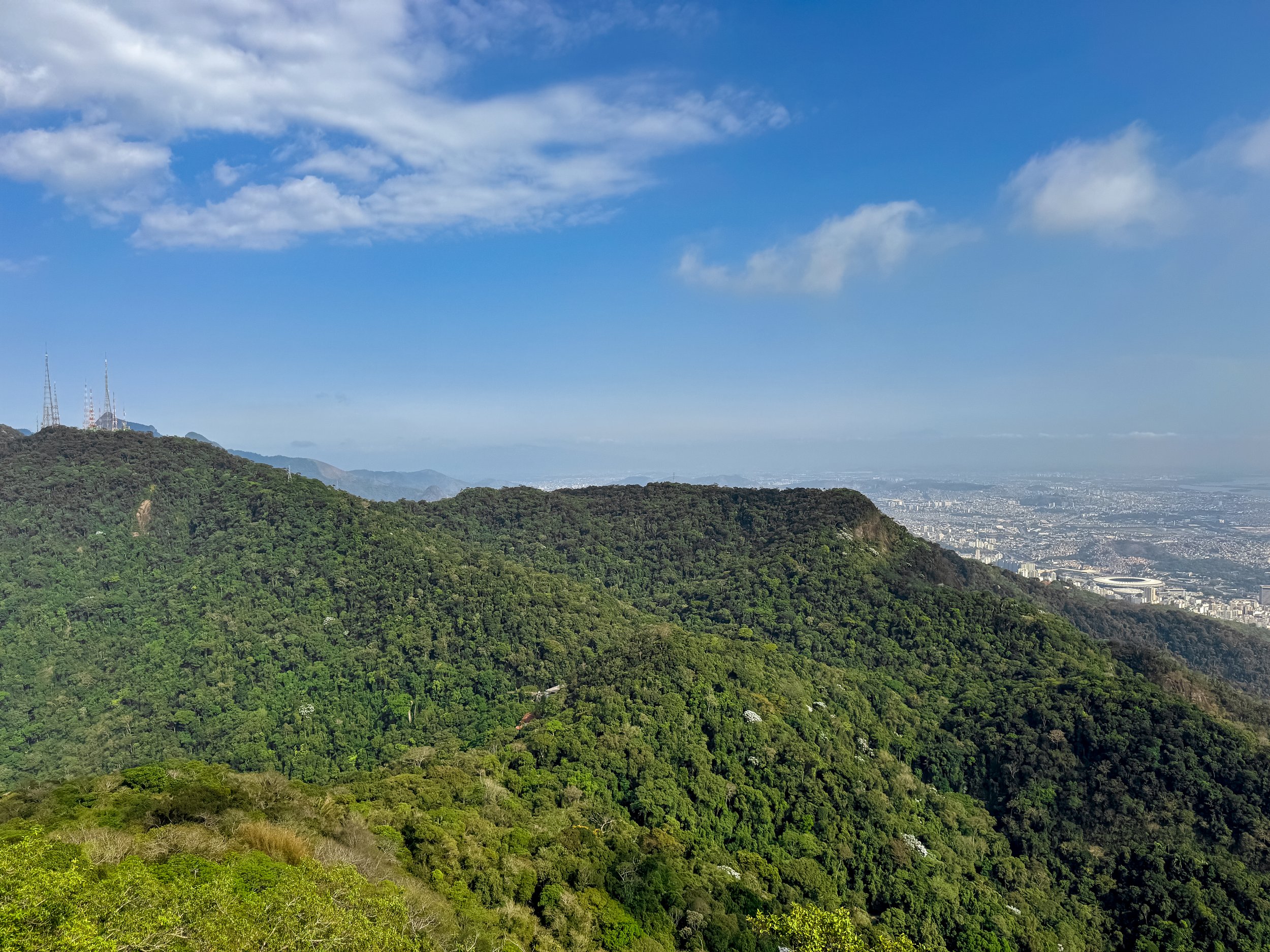
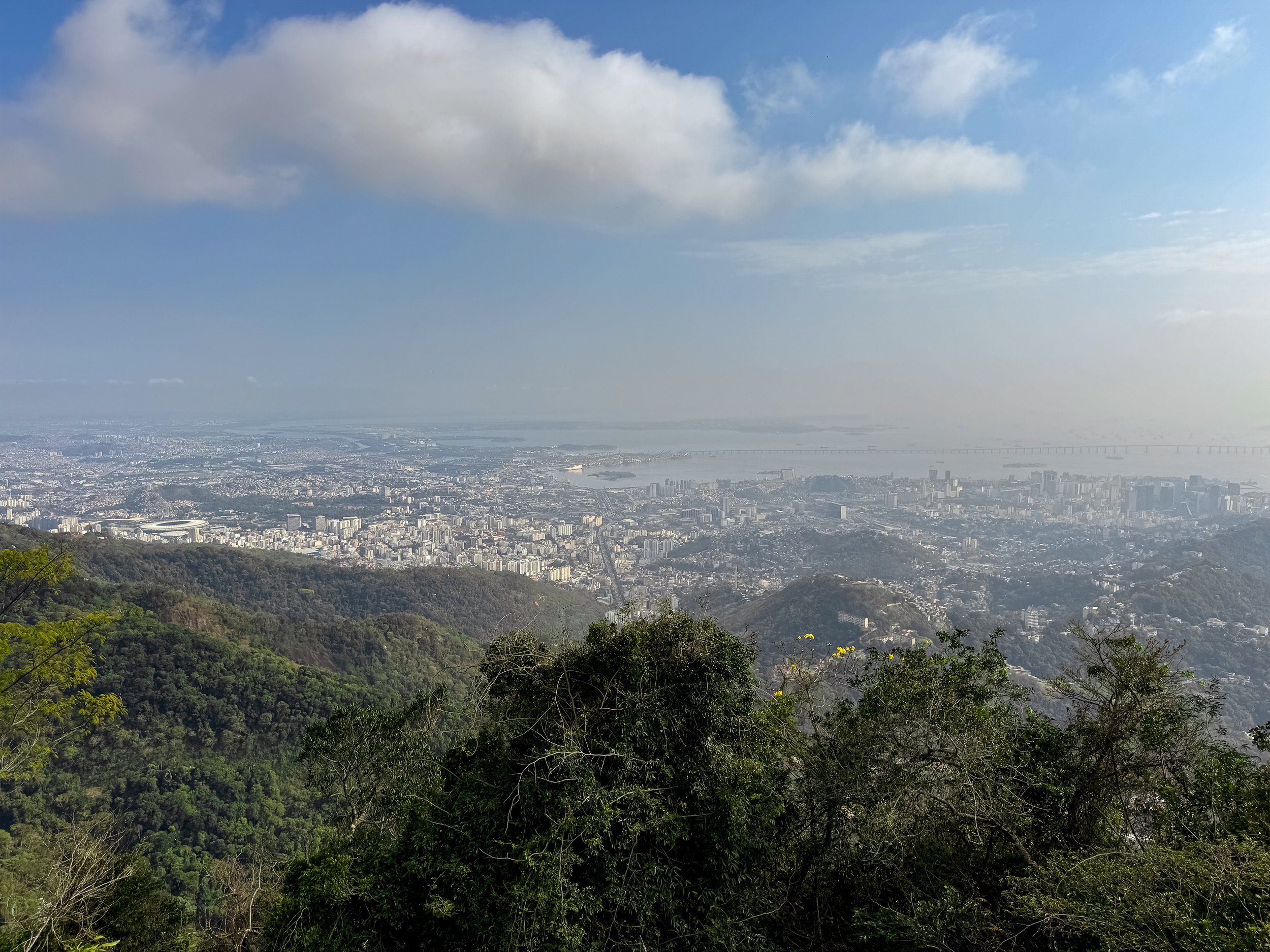
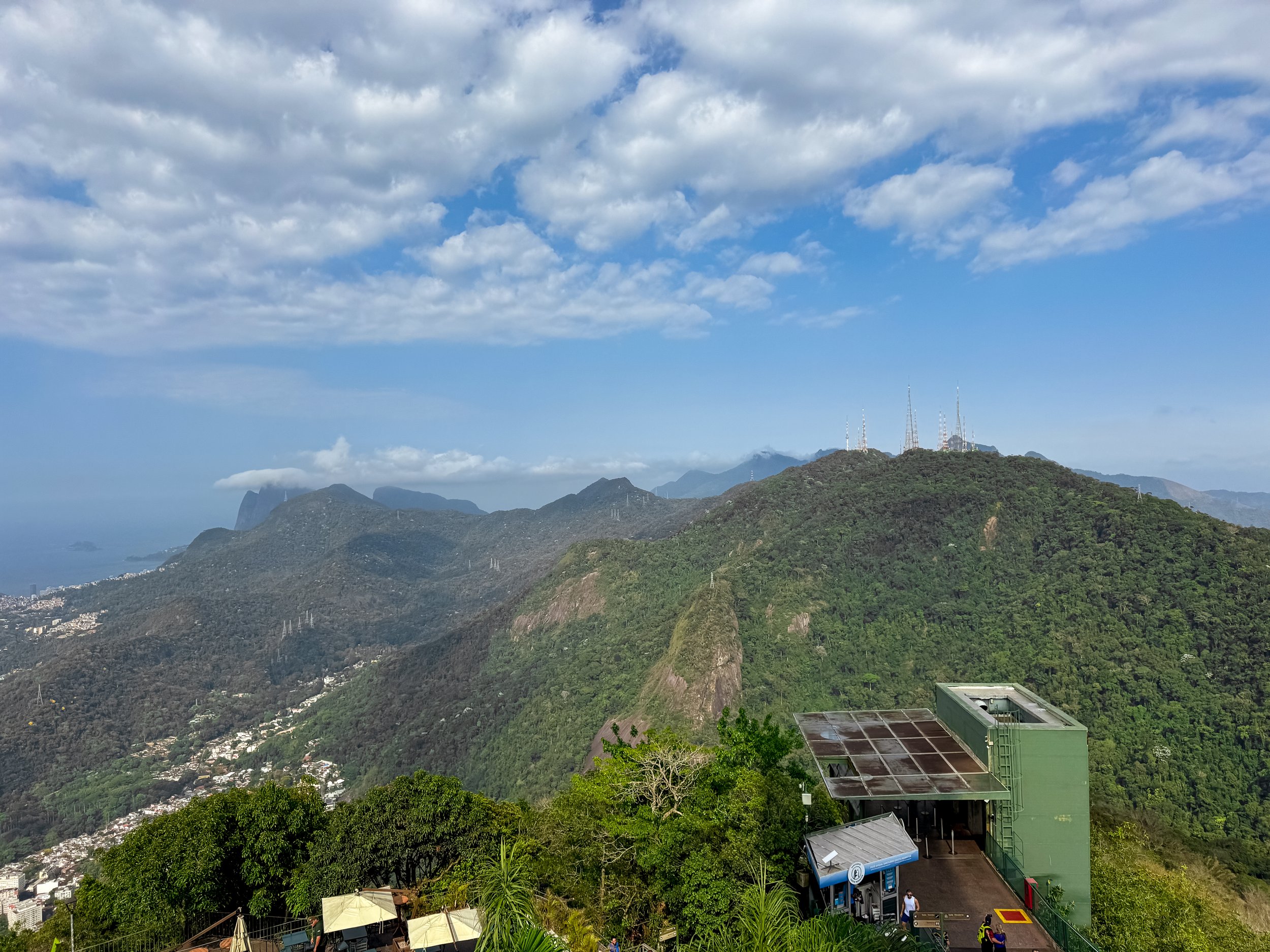
Christ The Redeemer
The iconic statue of Christ with his arms outstretched atop of the mountain overlooking Rio. On a clear day, he’s visible from across the city, peaking between skyscrapers and smaller mountains.
Tremdo Corcovado. A train that goes up the mountain to reach Christ the Redeemer. We booked our tickets a few days ahead of time for 7:20 on a clear morning. The best views of the statue are in the morning light while the best views of the city are in the afternoon. Even in the early morning, the summit was crowded with people taking selfies and admiring the view. Book here!
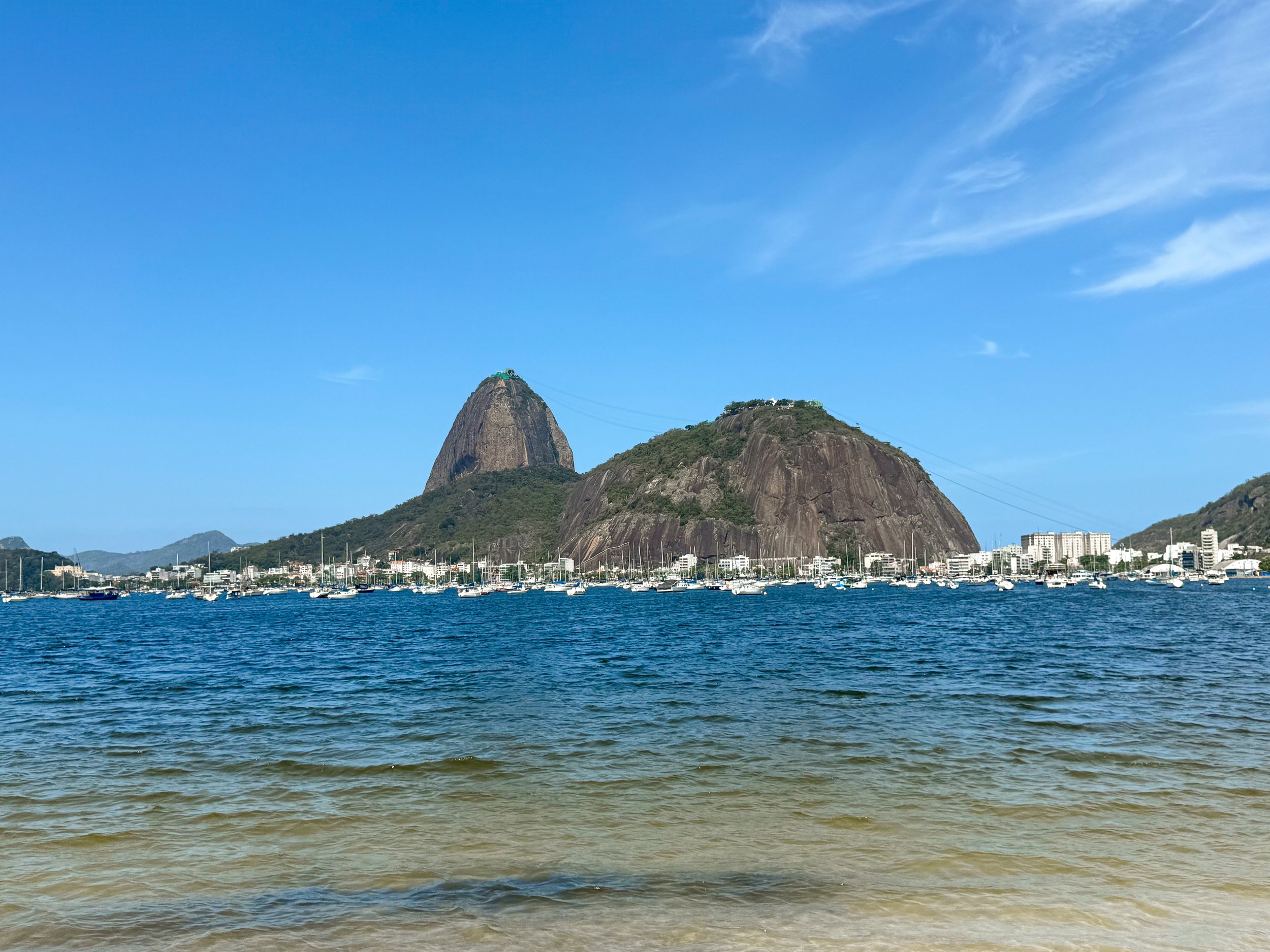
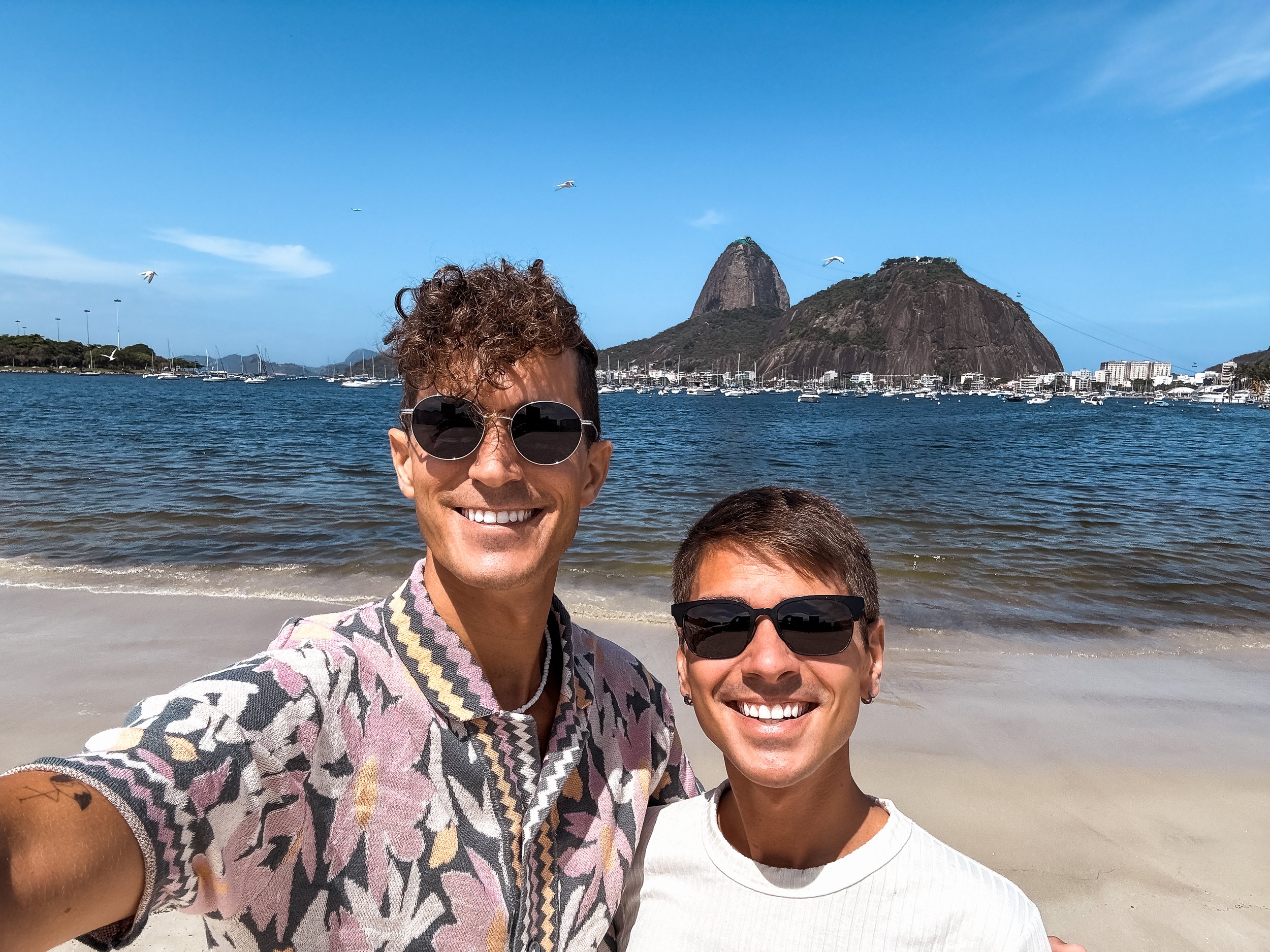
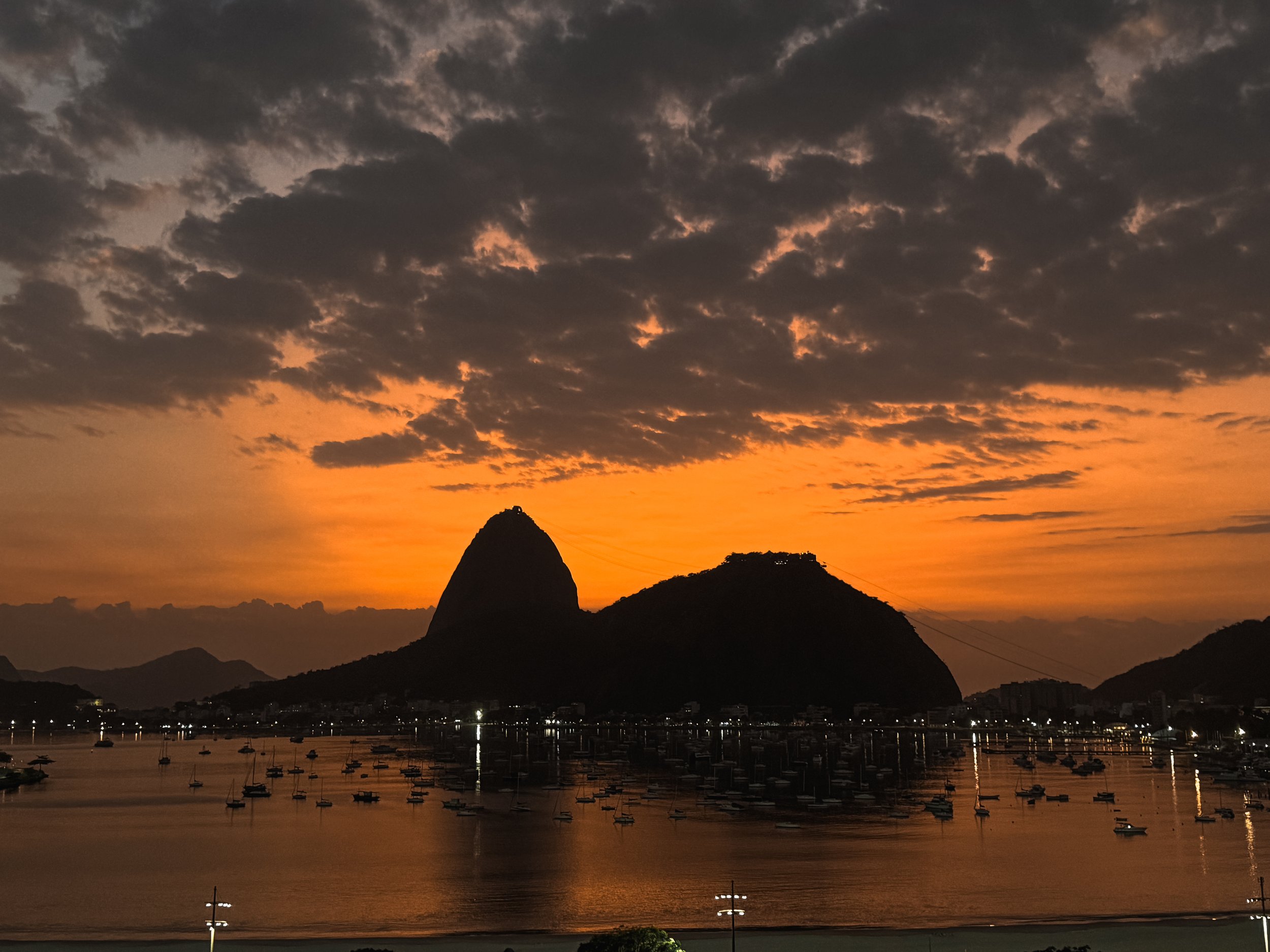
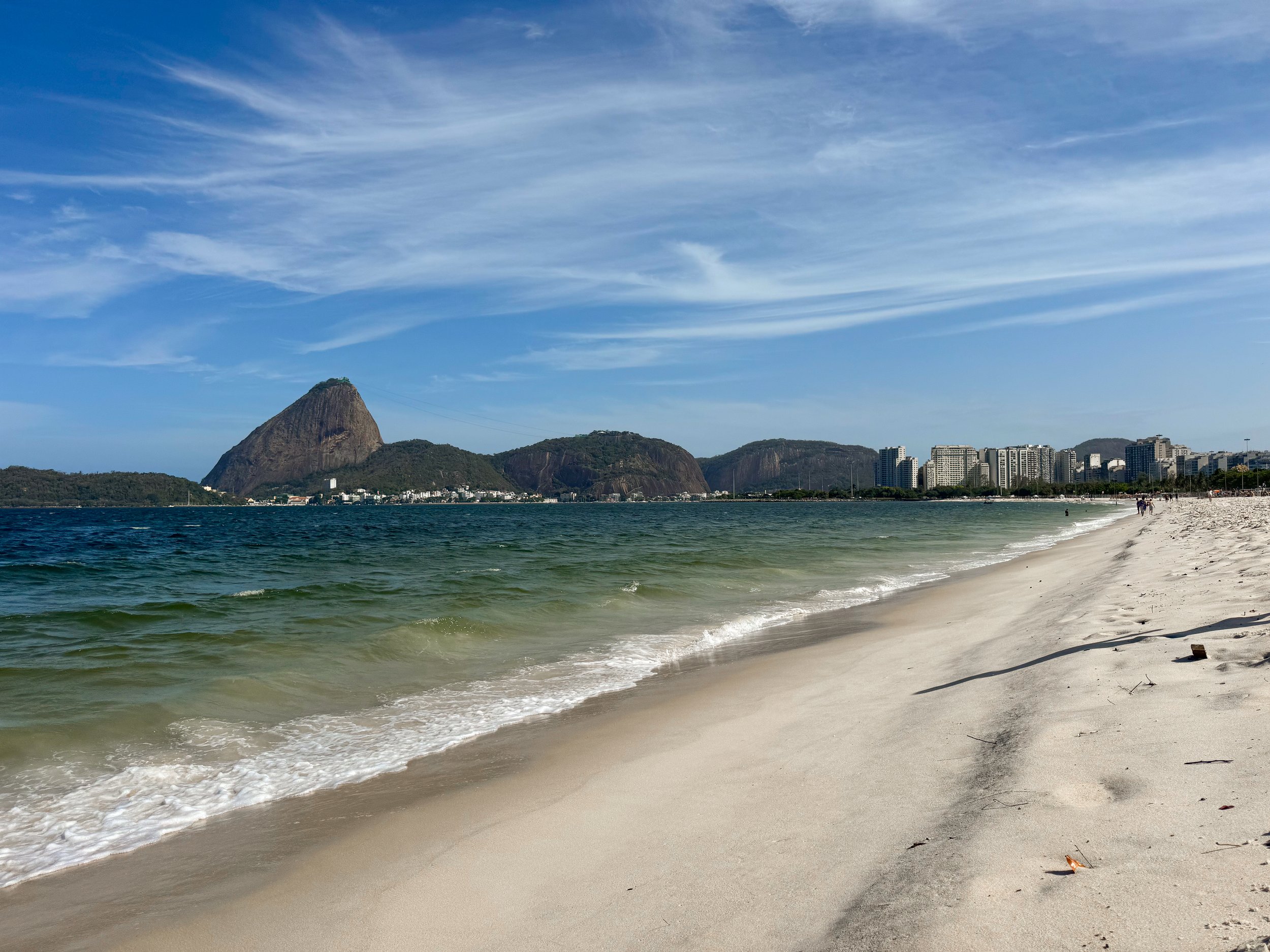


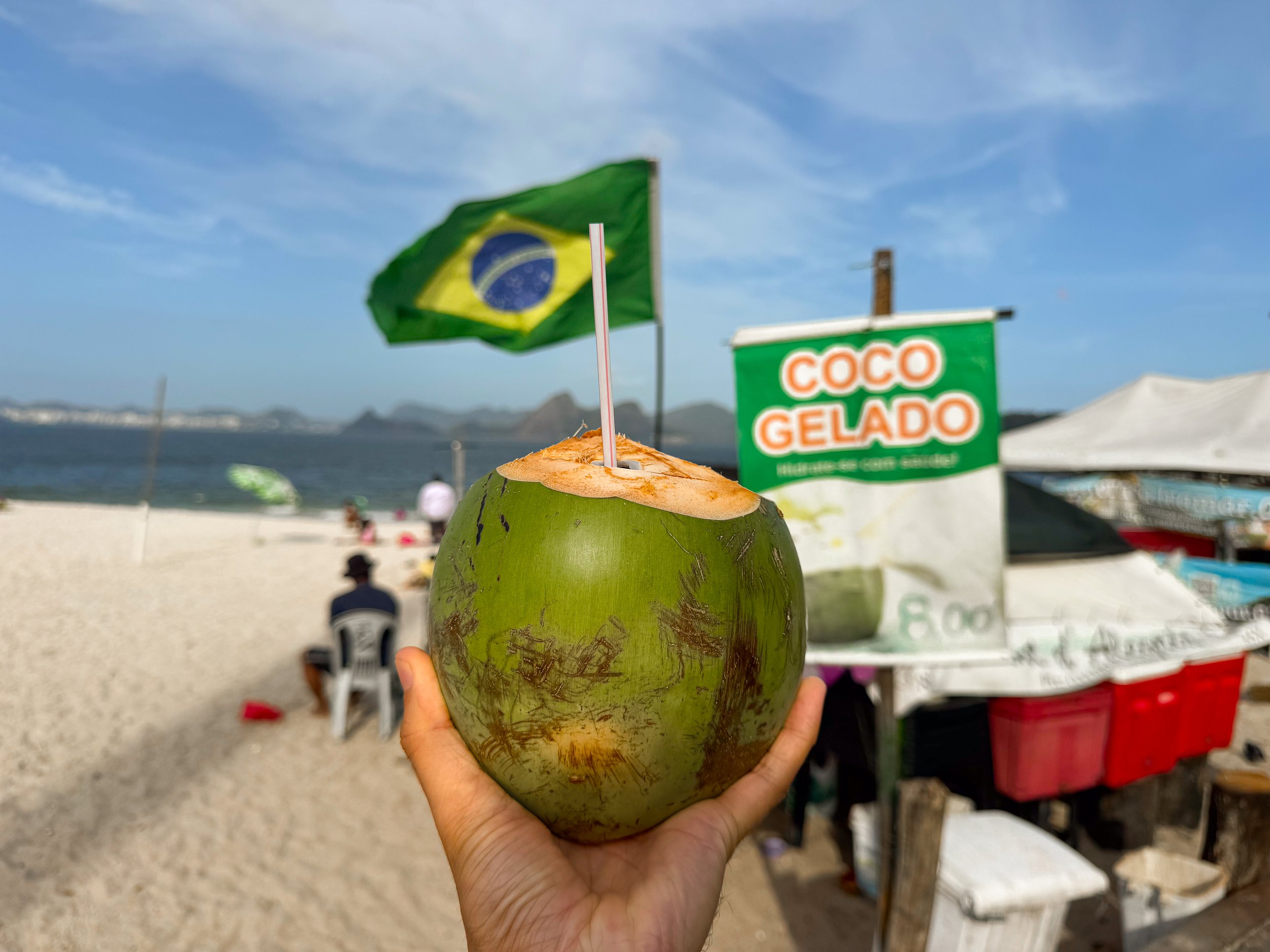
Botafogo & Flamengo
Botafogo & Flamengo are two adjacent neighborhoods with white sand beaches, cafes, restaurants, bars & hotels.
Botafogo Beach. A half moon shaped white sand beach with picturesque views of the ship dotted harbor and Sugarloaf Mountain. The water is often non-swimmable due to swim in due to sewage and pollution.
Flamengo Beach. A lengthy white sand beach with sun-kissed beach goers, vendors selling fresh coconuts, toned people flexing at the outdoor gyms, tournaments of Brazilian foot volley and a park with gardens and cycling paths.
Av. Infante Don Henrique. A scenic waterfront trail connecting both Flamengo and Botafogo Beaches with views of the harbor, sugarloaf mountain and Christ redeemer. People come here to take a leisurely stroll, jog, exercise and bike.
Brewteco Botafogo. A rooftop restaurant and bar overlooking Botafogo Beach and Sugarloaf Mountain. Come here for shareable appetizers like fried tapioca cheese bites and Brazilian beers including their house brewed beers.
Flor de Cactus. A coffee shop with sandwiches, pastries and locally made goods like honey, dried beans, hot sauce and juice.
What to Eat and Drink
Feijoada. A traditional Brazilian stew made from black beans and multiple meats. It’s commonly served with rice and sliced oranges. We cooked a vegan version of it at our Airbnb.
Moqueca. A traditional Brazilian stew made with fish, shrimp, plantains, coconut milk, tomatoes and spices.
Pastel. A fried or baked squared shaped pastry filled with any number of proteins from meats to cheese.
Pao de Quejo. Tasty and addicting Brazilian rolls made with cheese and tapioca flour. They popular everywhere in Brazil and common at breakfast.
Queijo Coalho. A popular Brazilian snack made from skewered cheese grilled over coals, covered in honey and sprinkled with oregano.
Bolhinos. Crispy fried cod fritters. They’re popular as appetizers at restaurants and bars.
Brigadeiro. A Brazilian truffle made from a chocolatey caramel covered in chocolate sprinkles.
Pipoca (Popcorn). The tasty snack is served in food carts across the streets of Rio. Try is served buttered & salted or glazed in caramel.
Palmito. Known as heart of palm, it’s common in salads.
Açaí. The tiny Amazonian super fruit from the Açaí palm. By itself, it has a bitter blackberry like flavor. It’s often served as a sorbet with other fruits, granola and honey.
Coconuts. Fresh coconuts sold whole and sliced open with a machete are synonymous with Brazil! The refreshing and tasty drinks are served on beaches across Rio for around $R10.
Caipirinha. A cocktail made from sliced limes and sugar muddled together shaken with cachaça, a little water and ice. It’s essentially a Brazilian margarita. They’re sold from street vendors, at beaches, bars and restaurants across Rio.
Guaraná Antarctica. A very popular Brazilian soda made from the guaraná fruit. It has a fuzzy cane sugar like flavor.
Brazilian Beers. There are three popular and inexpensive Brazilian beers sold almost everywhere. Brahma which is the most popular followed by Skol and Original.
Where to Stay
We stayed at an Airbnb overlooking Botafogo Beach and Sugarloaf Mountain. With is views, it was the most dreamy location we could have imagined staying in Rio while giving us beach access to layout under the Brazilian sun.
Good to Know
Language. Portuguese is the national language of Brazil. Even is a city like Rio, very few people speak English. We got by on some basic Portuguese phrases and words combined with some Spanish and Google Translate.
LGBTQ+ From rainbow flags at beaches to meeting other Brazilians from across the spectrum, Rio is very welcoming of LGBTQ+ tourists.
Drinking Water. The tap water is technically safe to drink in Rio although it has an unpleasant taste, not even boiling water will eliminate the flavor. Unfortunately, we drank mostly bottled water while in Rio.
Cash. Very few places accept cash. The ones that do don’t often have change for larger bills like 50s or 100s.
Beaches. The beaches were surprisingly clean across Rio with little to no trash anywhere on shore.
Weather. Though the air temperature was warm, the water was still very cold in the early spring (mid October).
Getting Around. Ubers and yellow taxis are plentiful & inexpensive to get around the city as well as the airport.
Safety
Be Aware. Despite everyone’s warning, we felt very safe in Rio. Like in most cities, we were aware of our surroundings, kept our phones and wallets in our front pockets, double checked directions and use instincts before walking down a street.
Avoiding Favelas. Favelas are notoriously dangerous due to the high risk of violent crime and best avoided. Even on a guided tour like we took in Vidigal, our safety couldn’t be guaranteed.
We used the satellite view on our maps app to determine if an area may be a favela. Generally, high density areas with tin roofs and no defined streets are favelas. Areas with clay tiled roofs, skyscrapers with streets are generally safer neighborhoods.
The north side of the city between the international airport and El Centro should be avoided. This is the most dangerous region with several favelas.
Beaches. To avoid theft on the beaches, we kept our valuables out of reach of anyone passing by. People mentioned not to visit the beaches at night however we didn’t see any issues. Most beaches including Copacabana, Ipanema and Botafogo are well lit and well utilized at night.
For Next Time…
Having caught a cold during our week in Rio, it limited our ability to do and see everything we had hoped. Luckily, Rio is now near the top of our list of places to return to. For next time, we plan to:
Take Surf Lessons at Amador or Grumari beaches.
Go on a boat tour of the Cargarras Islands, a protected nature reserve off the coast of Rio.
Hike to the summit of Piedra Bonita, one of the city’s tallest granite peaks.
Visit during Carnival, the world’s largest party with parades, music festivals & feathered dancers.
The Brazilian Amazon
The Brazilian Amazon is a vast rainforest covering Northern Brazil and a large area of the South American continent. It’s home to the Amazon Rainforest and River, an immense amount of biodiversity and wildlife, indigenous tribes, eco-activities, river cruises and millions of people.
Amazon Rainforest
The Brazilian Amazon is a vast rainforest covering Northern Brazil and a large area of the South American continent. It’s home to the Amazon Rainforest and River, an immense amount of biodiversity and wildlife, indigenous tribes, eco-activities, river cruises and millions of people. We spent over a week in the region, splitting our time between a multi night river boat tour and in the city of Manaus.
River Cruise
We booked a four day, three night river boat tour of the Amazon and Rio Negro from Manaus. We cruised up and down the river, stopping at various white sand beaches to swim in the piranha infested waters and with pink river dolphins. By day, our guide brought us hiking and camping in the rainforest, to cooling cold springs, on a tour of an indigenous village, fishing for piranha and searching for caiman. At night, we slept in woven hammocks stretching across the upper deck of the wooden river boat. All meals were included, including several Amazonian fish dishes and fruit juices.
Amazonian Rivers
We visited two Amazonian rivers on our tour. The mighty Amazon River, its largest tributary, The Rio Negro and the location where both rivers meet.
The Amazon River. The world’s largest river, winding 4,000 miles across South America. Its muddy brown waters are a lifeline to the Amazon Rainforest, its biodiversity and indigenous communities.
The Rio Negro. The largest tributary feeding the Amazon River named after its dark colored water. By volume, it’s one of the largest rivers in the world.
The Meeting Waters. The location where the milky brown water of The Amazon River and dark brown waters of the Rio Negro meet.

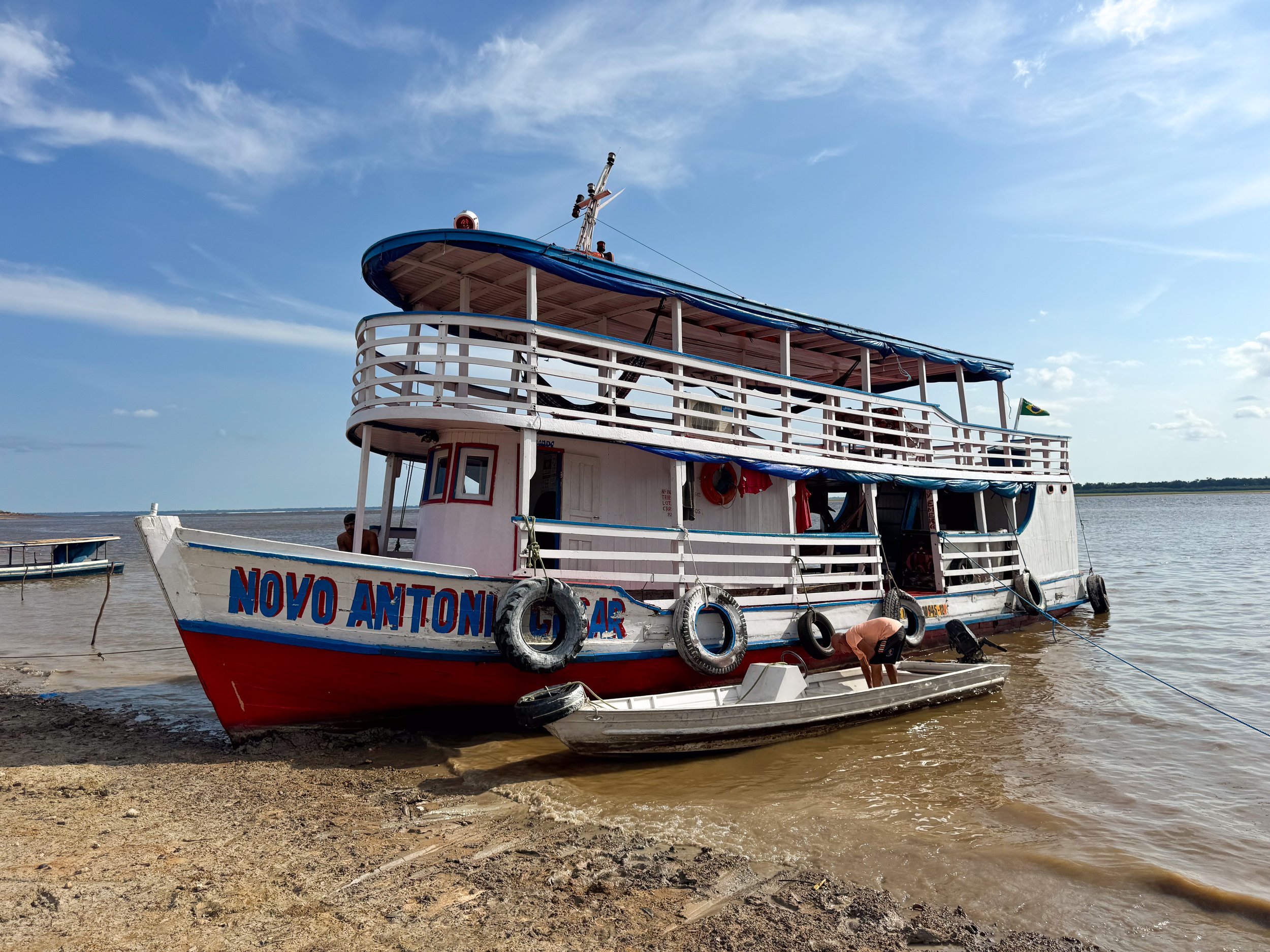
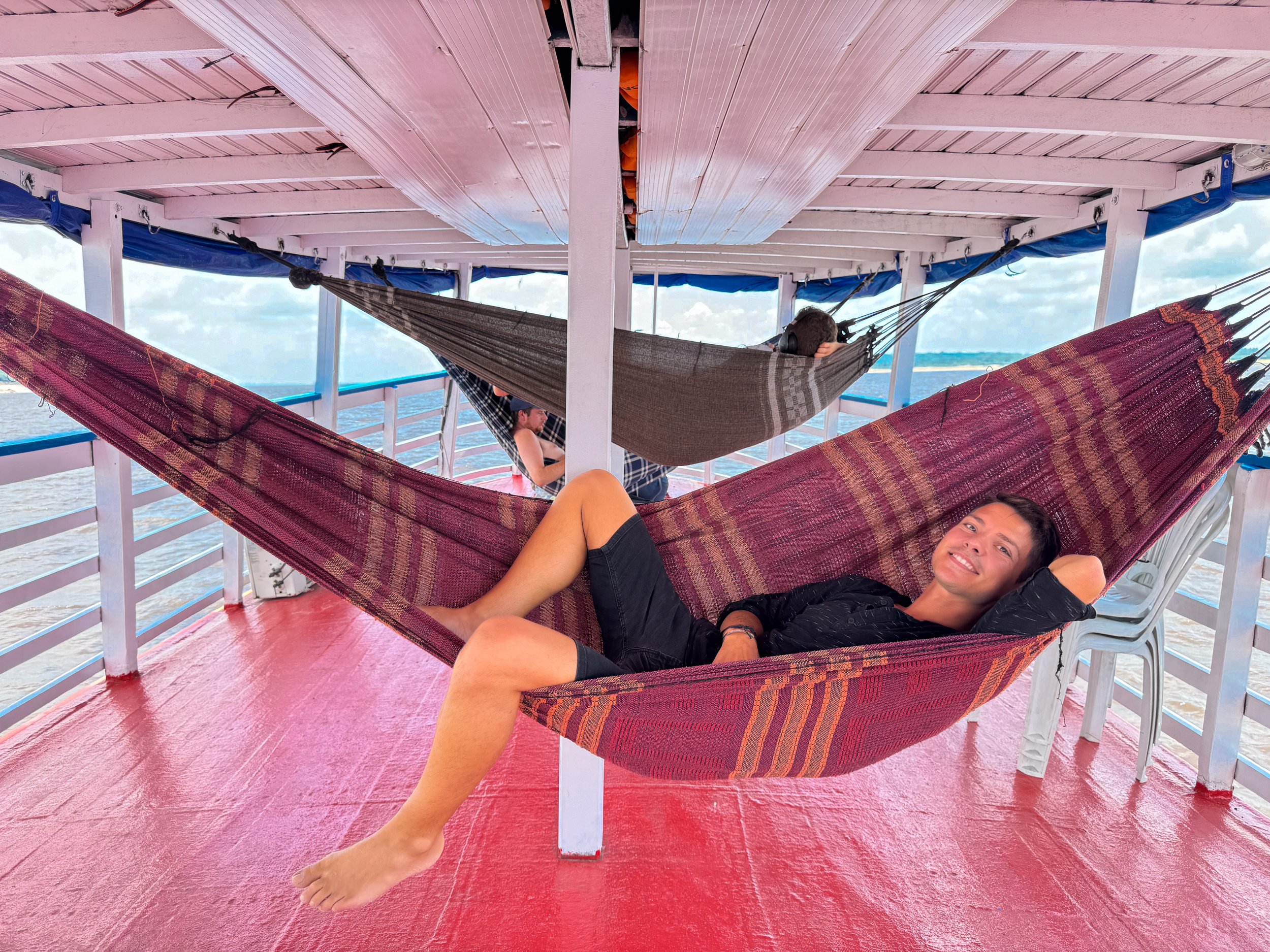
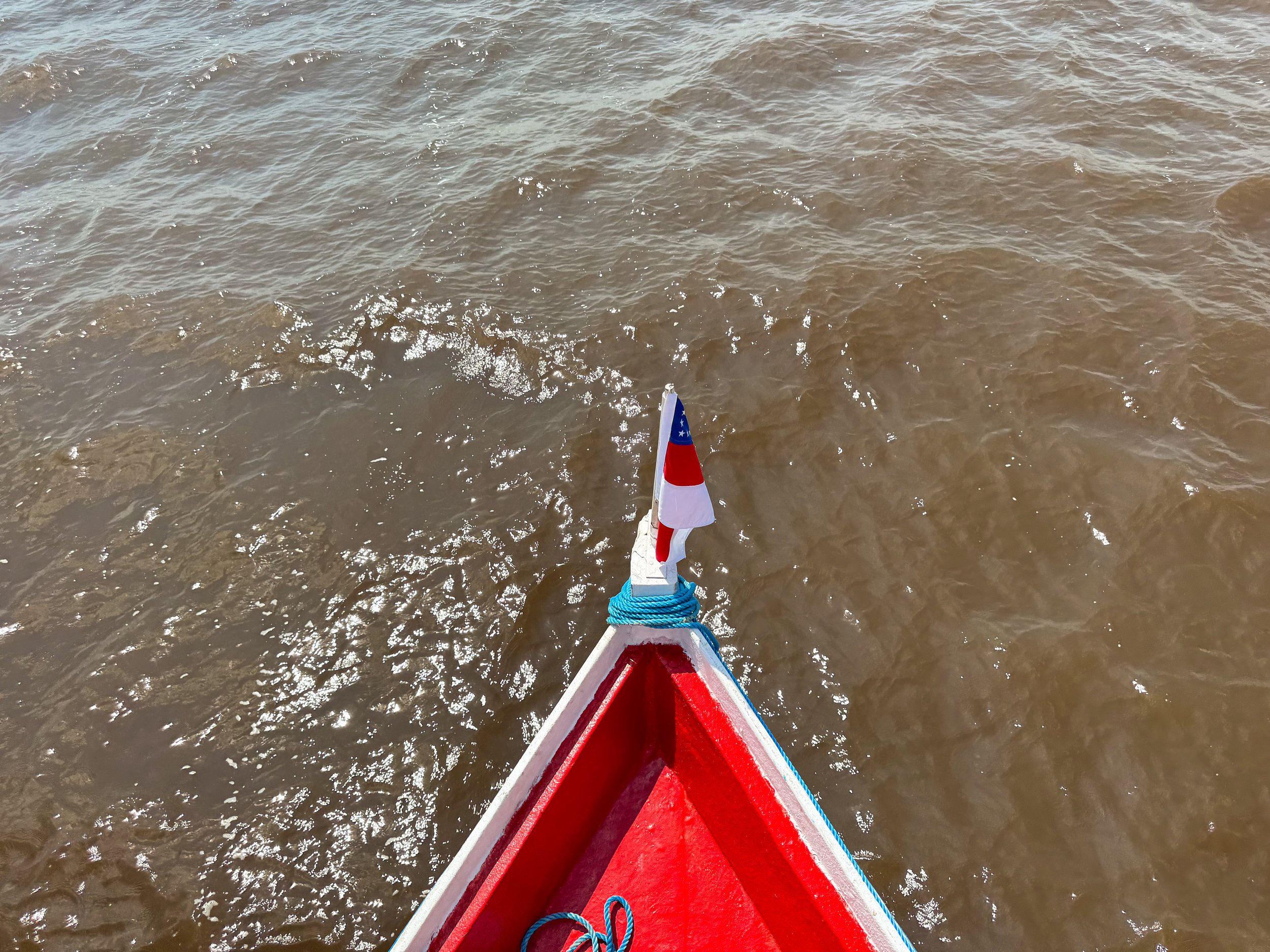
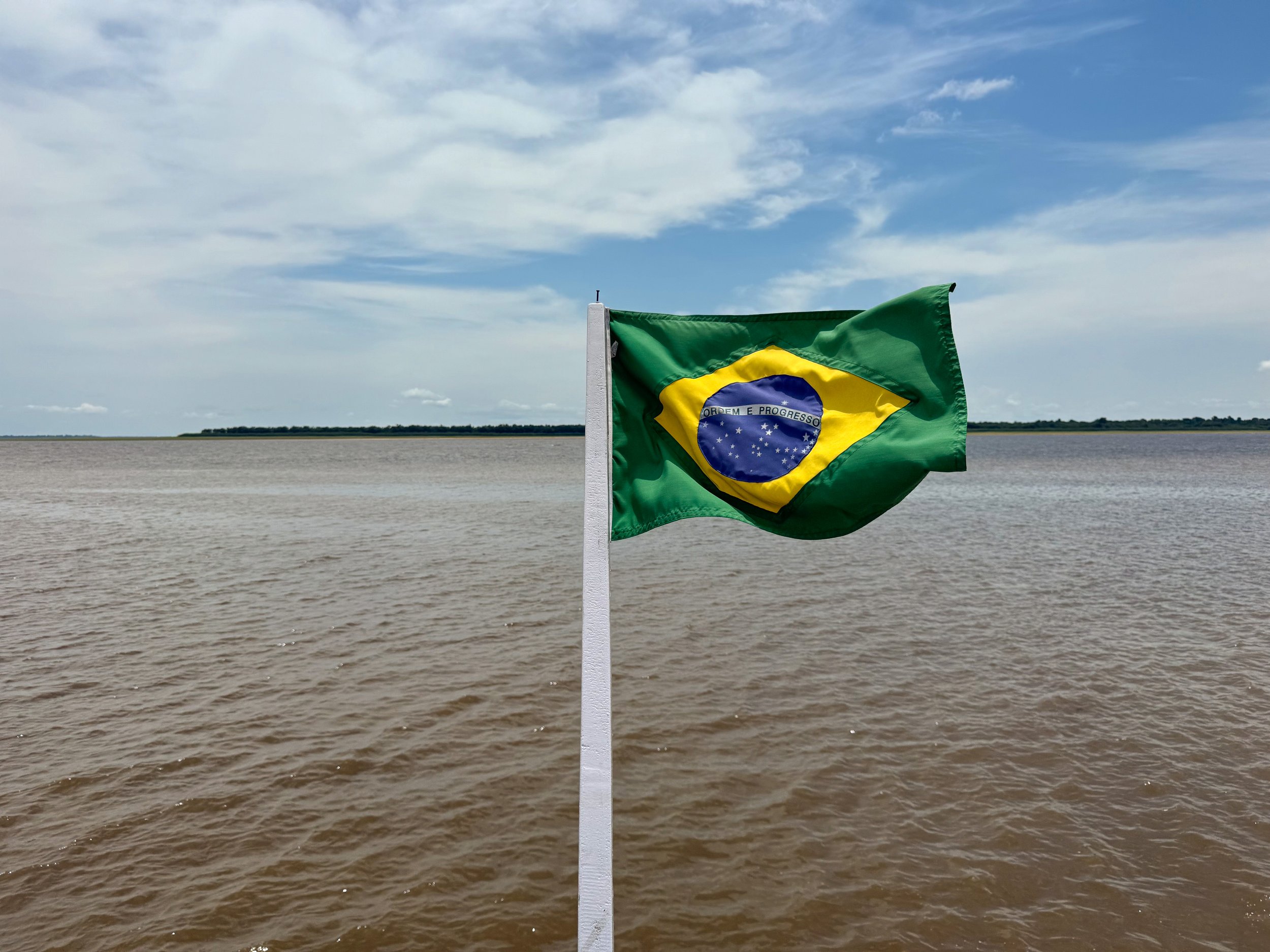
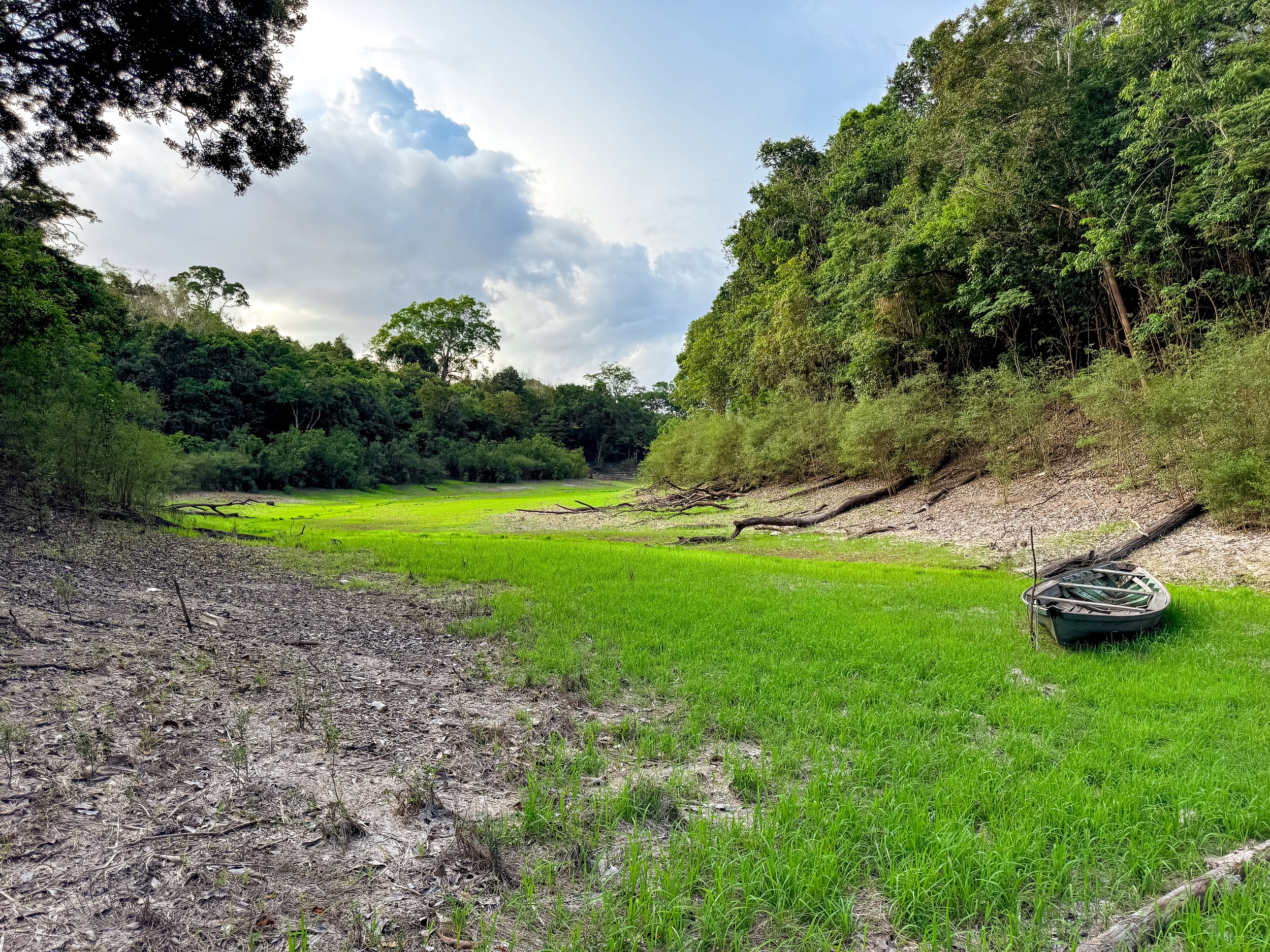
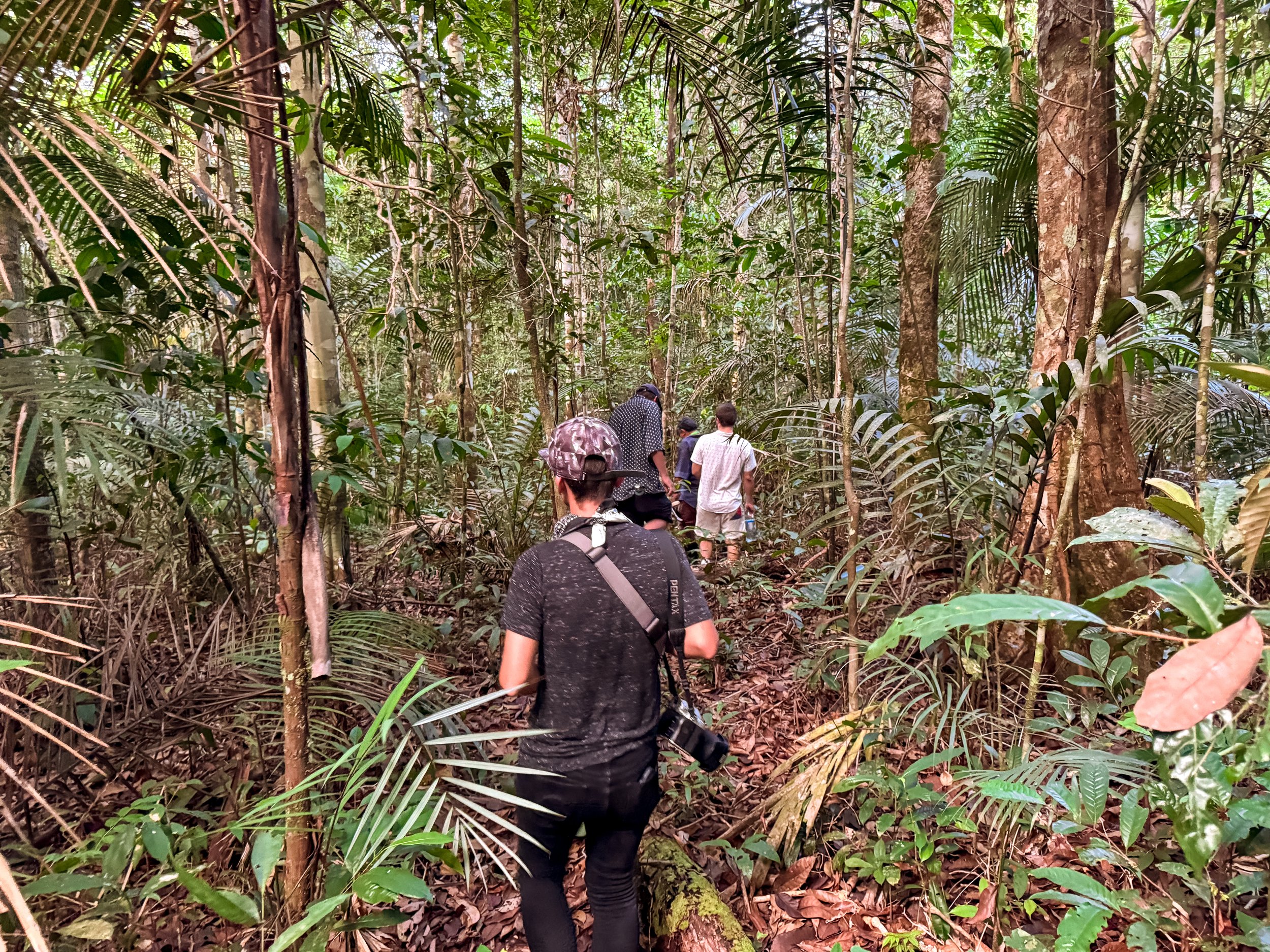
Day One
We spent our first day in the Amazon on the Rio Negro and our first night, sleeping in a hammock within the jungle.
At the Manaus Harbor, we boarded a speed boat and navigated through a storm and choppy water along the Rio Negro to reach The Meeting Waters where we floated between both rivers. We retuned to Manaus where we refueled, stocked up on groceries and ate breakfast at a floating gas station before continuing up river. From the bow of the boat, the Rio Negro stretched far over the horizon. Along its banks were surprisingly white sand beaches, dense tree lines and the occasional river boat, eventually including ours. Arriving at the boat, the crew welcomed us on board and showed us to the upper deck where we would be sleeping in hammocks for the following nights. We relaxed for the afternoon, enjoying fried pirarucu and cashew juice for lunch.
Late in the afternoon, we packed an overnight bag with our hammocks and were led ashore and into the jungle by our guide. Along the trail, he stopped to point out Amazonian fruits, medicinal plants, poisonous spiders and demonstrated how the rubber tree is processed. As night fell, we made camp under a small hut, hung our hammocks and ate fried piranha for dinner. While lying in our hammocks, the noise of the jungle kept us awake for some time. We listened to the roar of howler monkeys, chirps of crickets, croaks of frogs, squawks of birds and hum of cicadas fill the air.
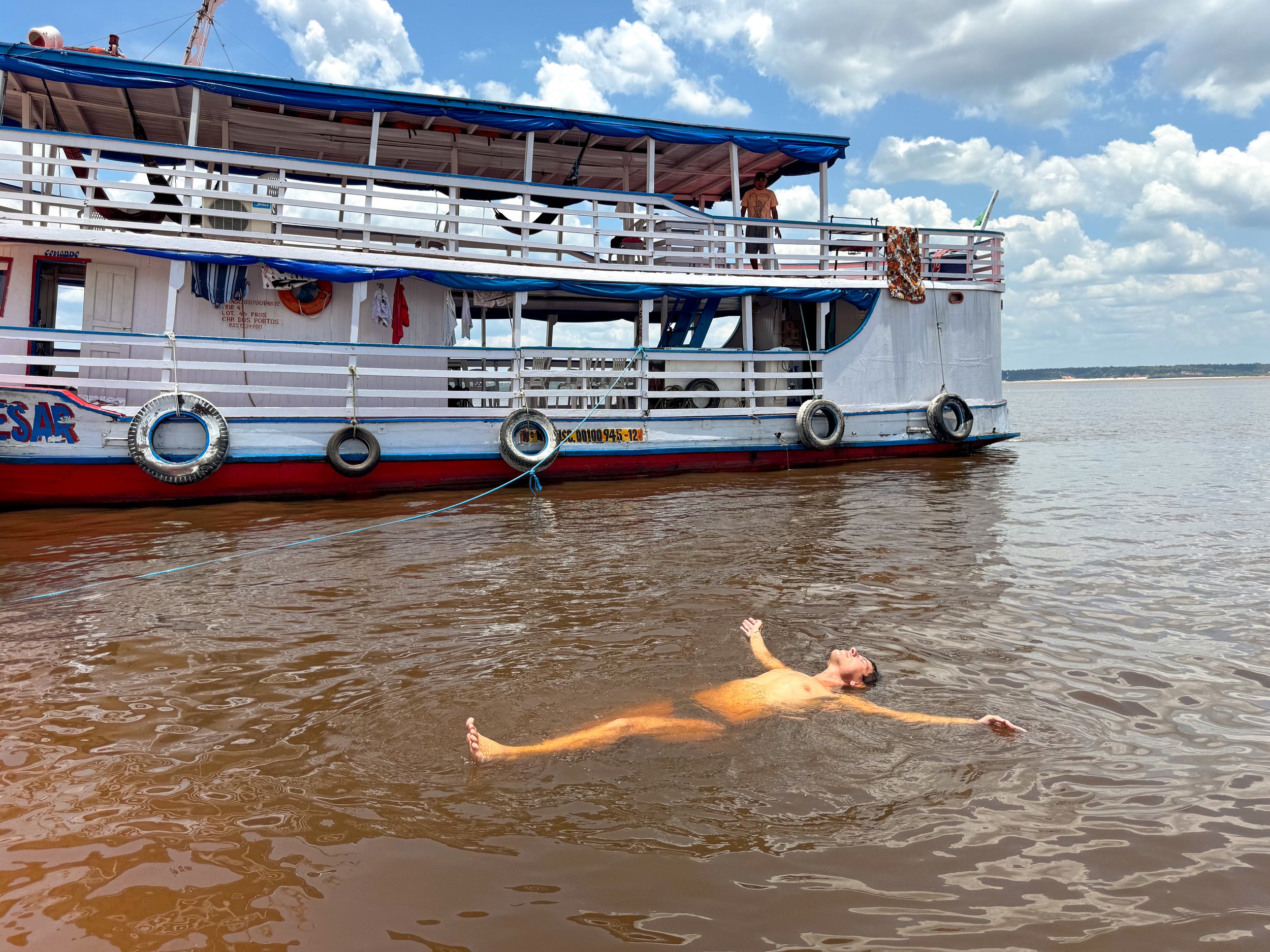
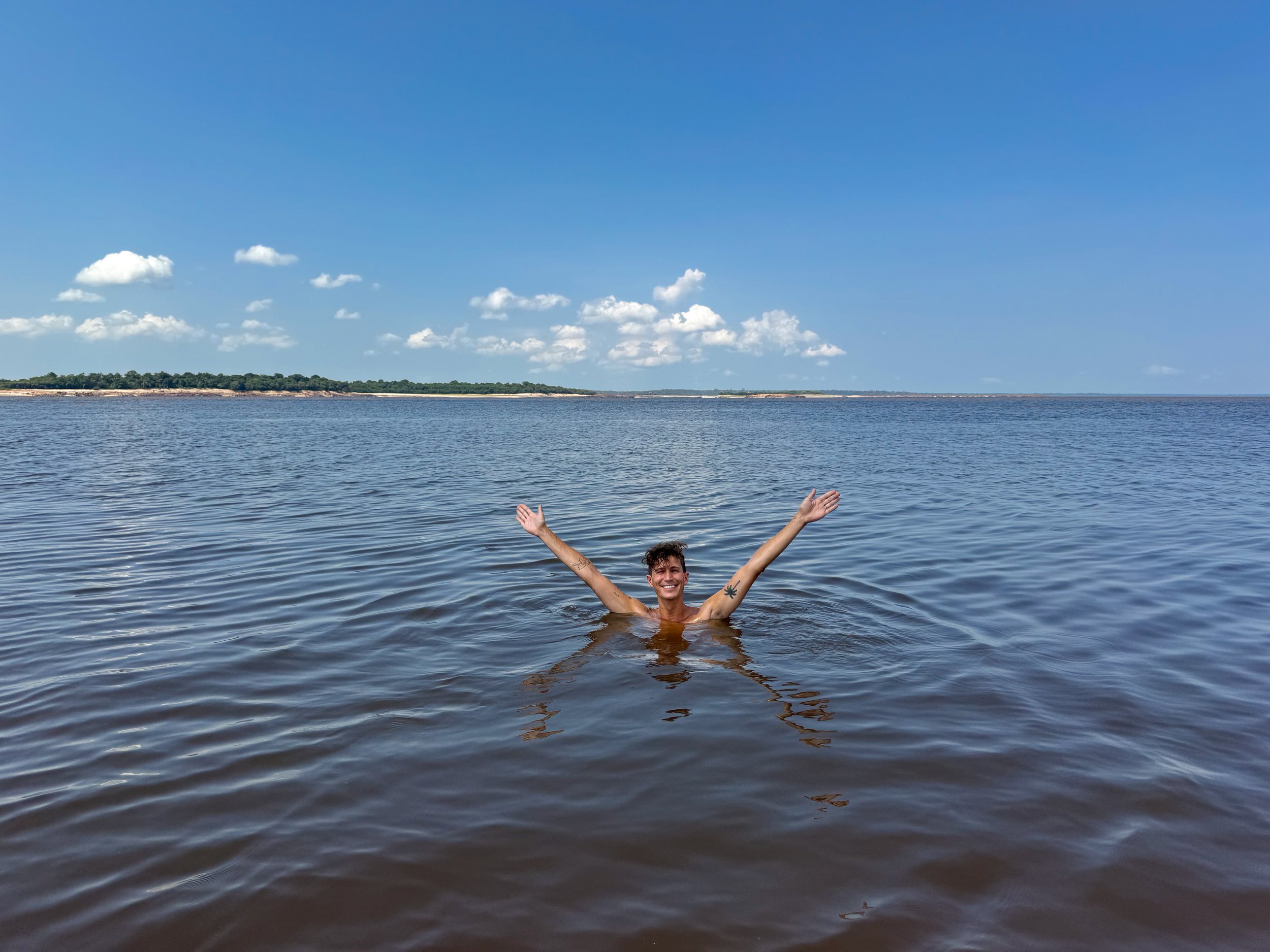
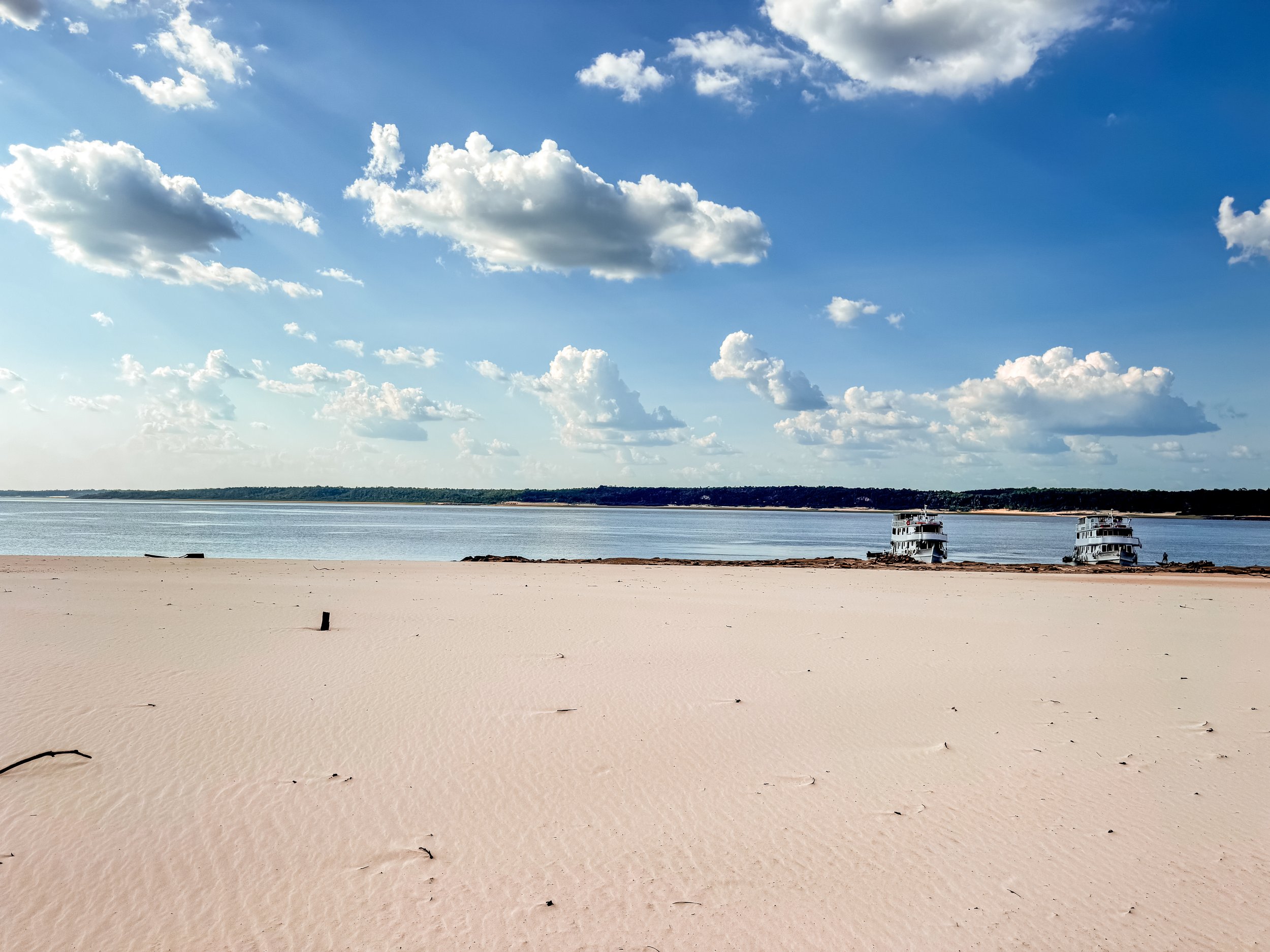
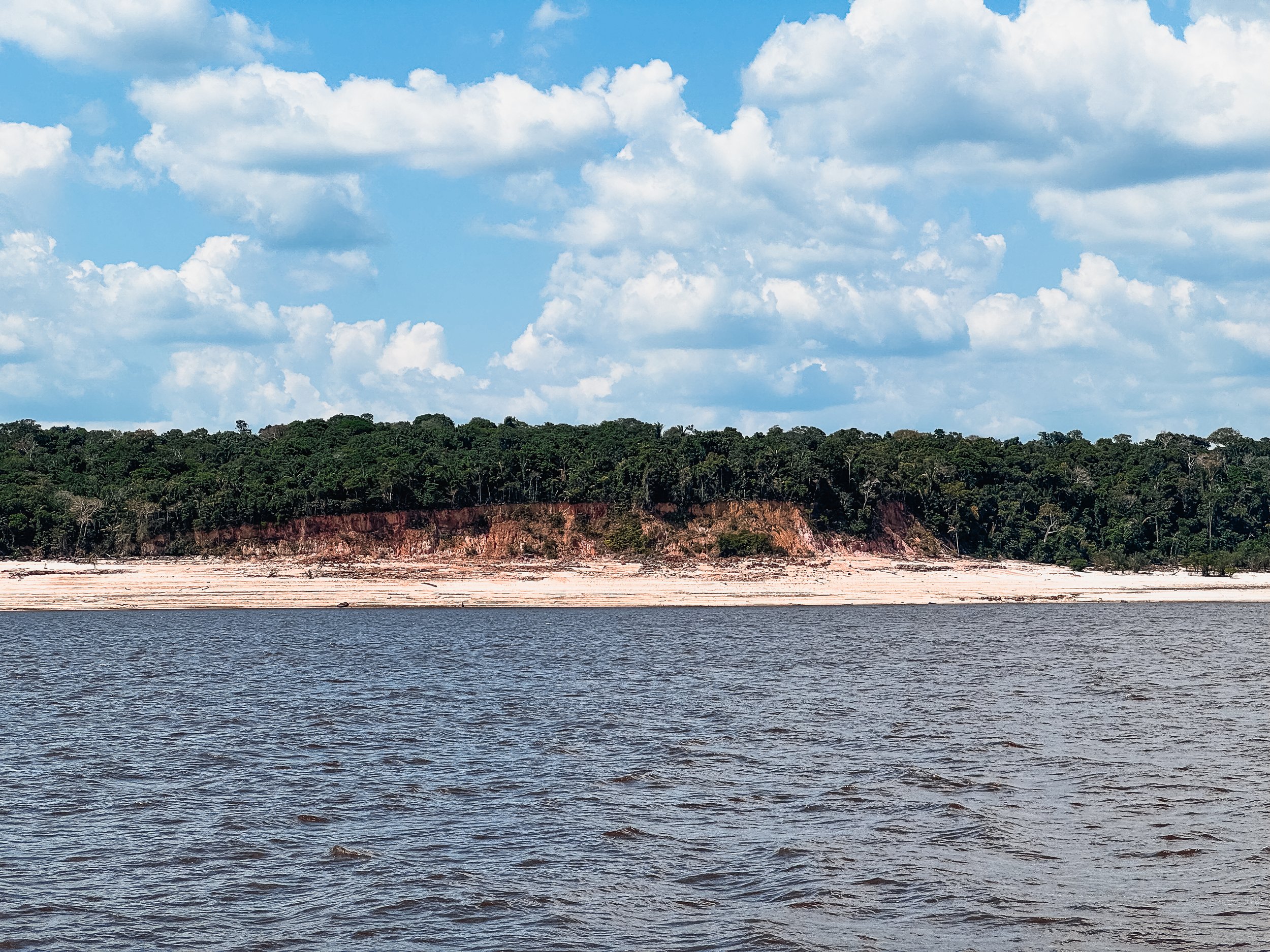
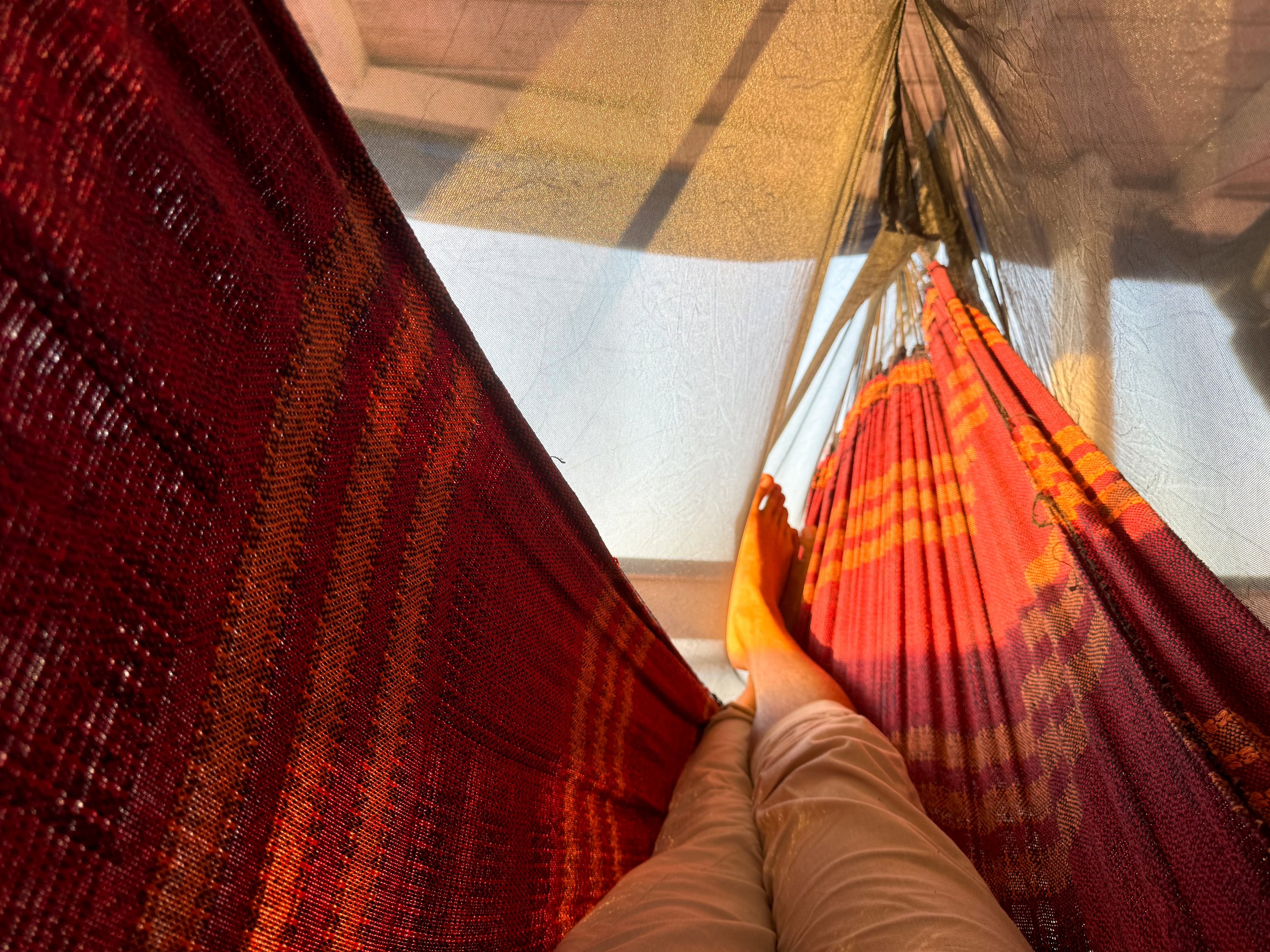
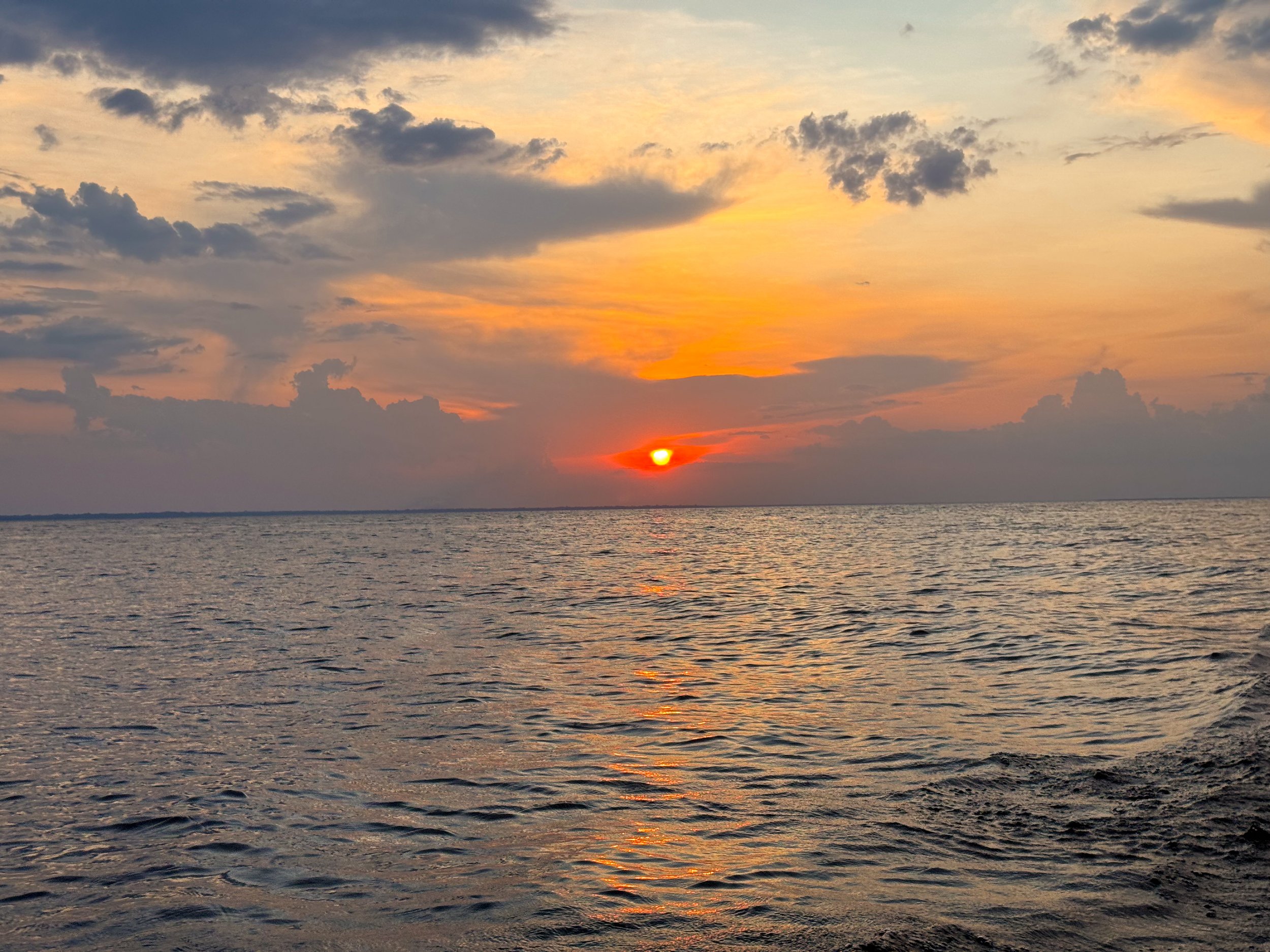
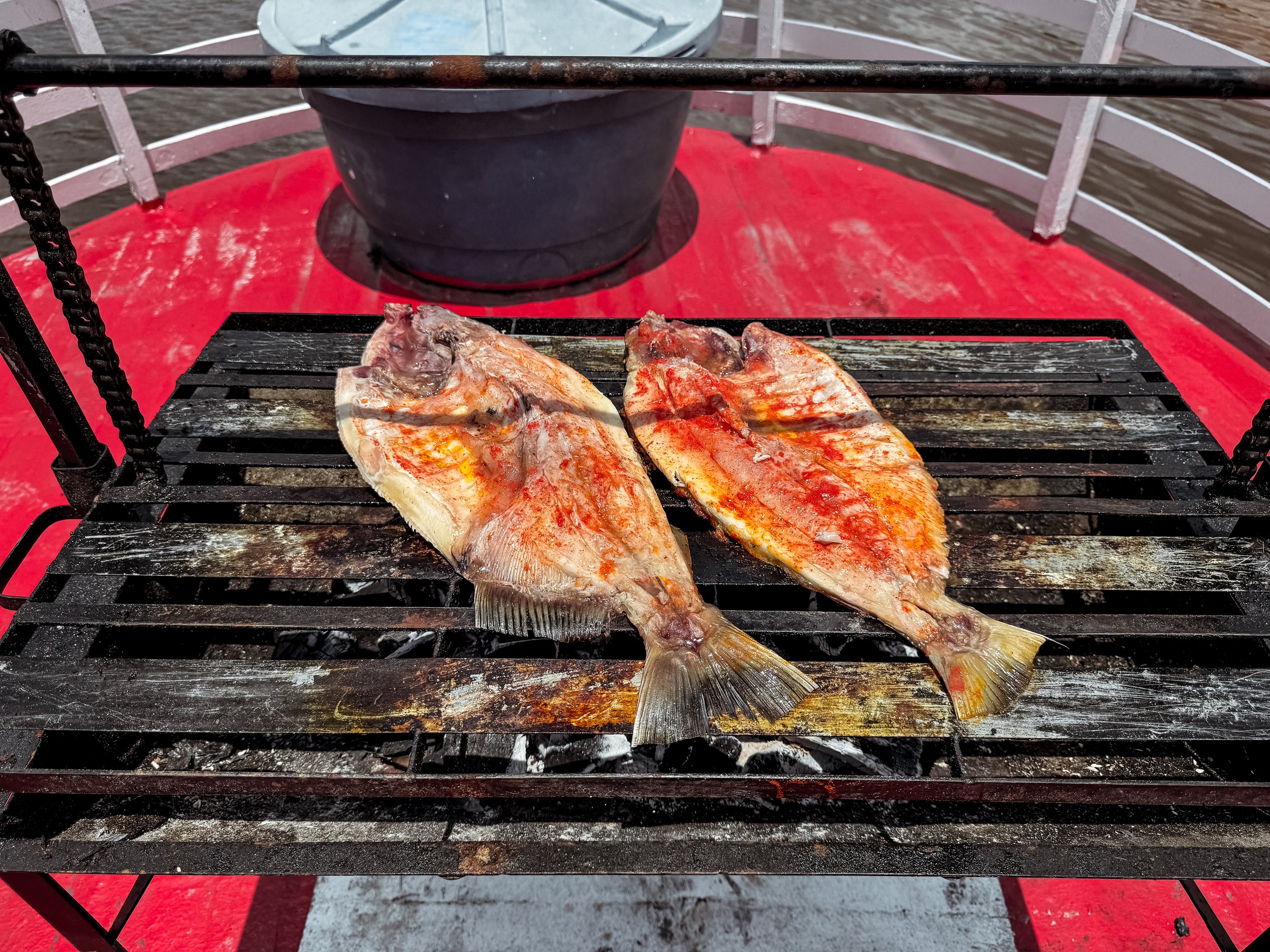
Day Two
We spent our second day in the Amazon swimming in the Rio Negro, relaxing in our hammocks and cooling off in cold stream.
After our night in the jungle, we retuned to the river boat for eggs, tropical fruits and avocado juice. While eating, we cruised down river and moored at white sand beach. We spent the morning here sunbathing on shore, spotting dolphins and swimming in the warm waters of the Rio Negro. As we swam, little fish nibbled at our toes, thankfully not a school of piranha! For lunch, the crew grilled fish, tambaqui de banda, an Amazonian staple. We spent the afternoon on board, feasting on the meal, sipping on Brazilian beer and relaxing in our hammocks.
As the late afternoon heat peaked, our guide brought us ashore to bathe in a cold stream at the base of the indigenous Tatuyo Village, which translates to “Big Snake.” In the village, we visited an indigenous friend of our guide, who invited us into his palm thatched home for coffee. At sunset, we made our way back to the boat, meeting the village Shaman along the way. He invited us back to the village the next morning for a ceremonial ritual.
After sunset and dinner, we laid in our hammocks, reminiscing on the day as the gentle waves rocked the boat and us to sleep.
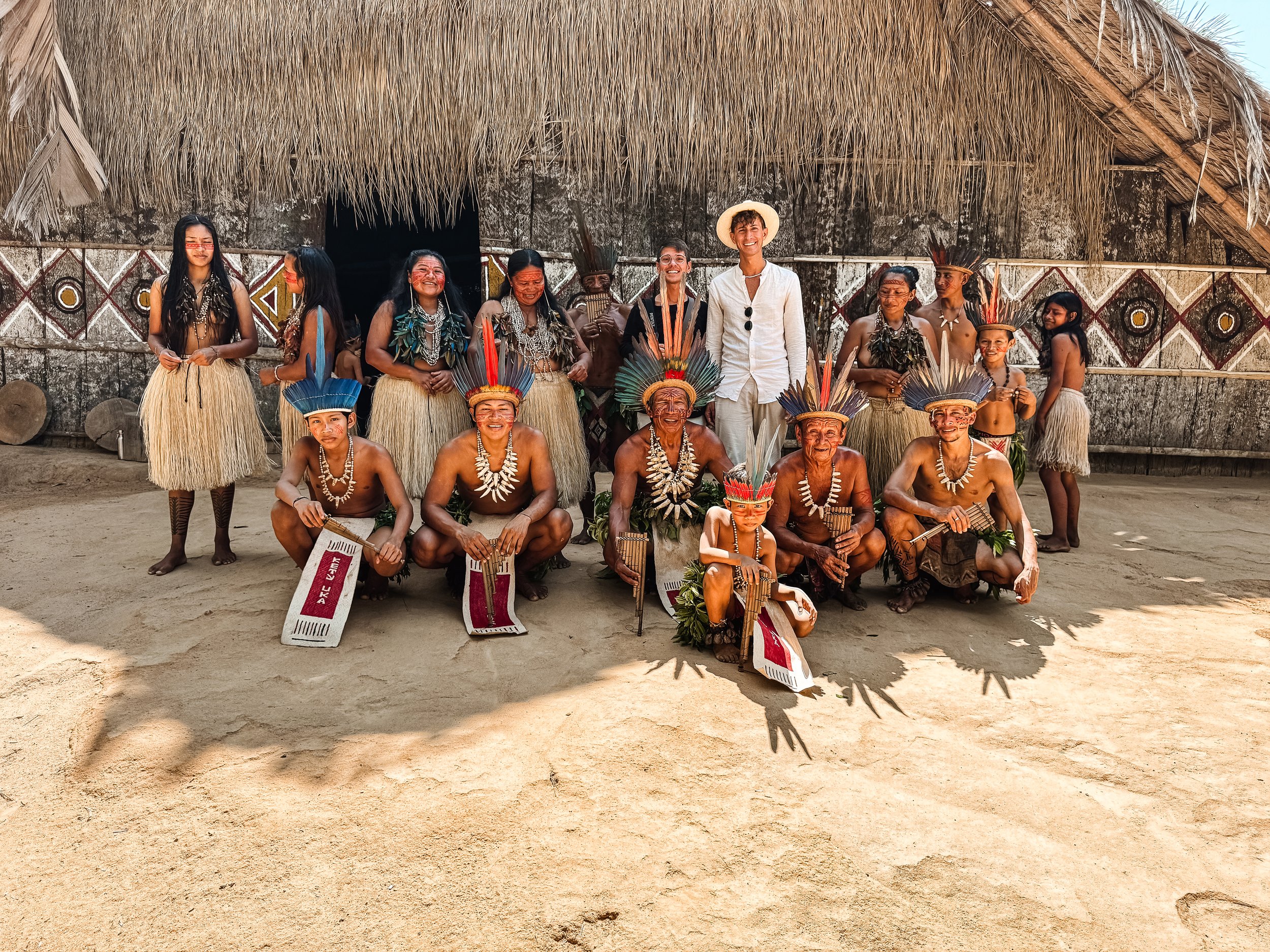
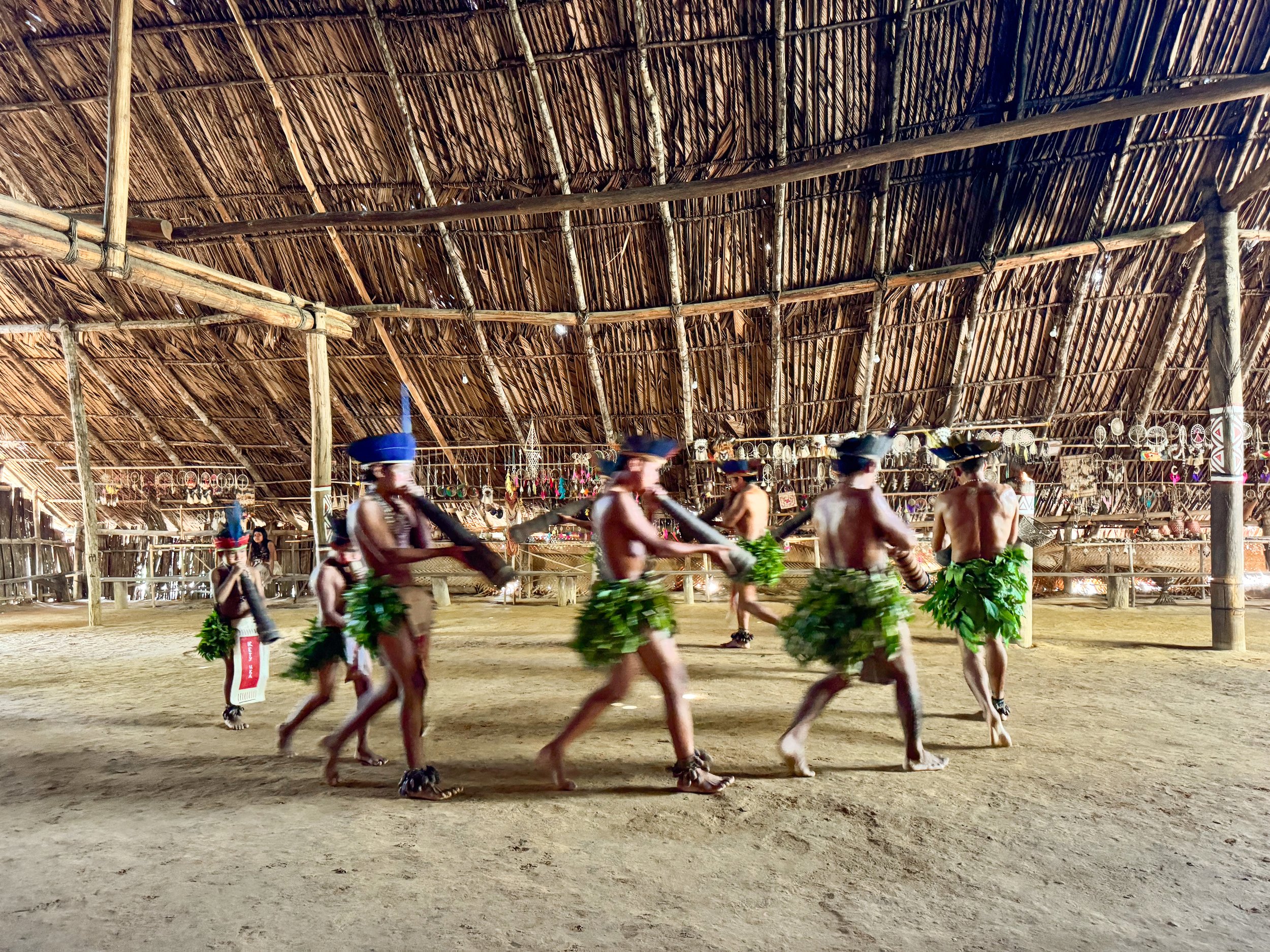
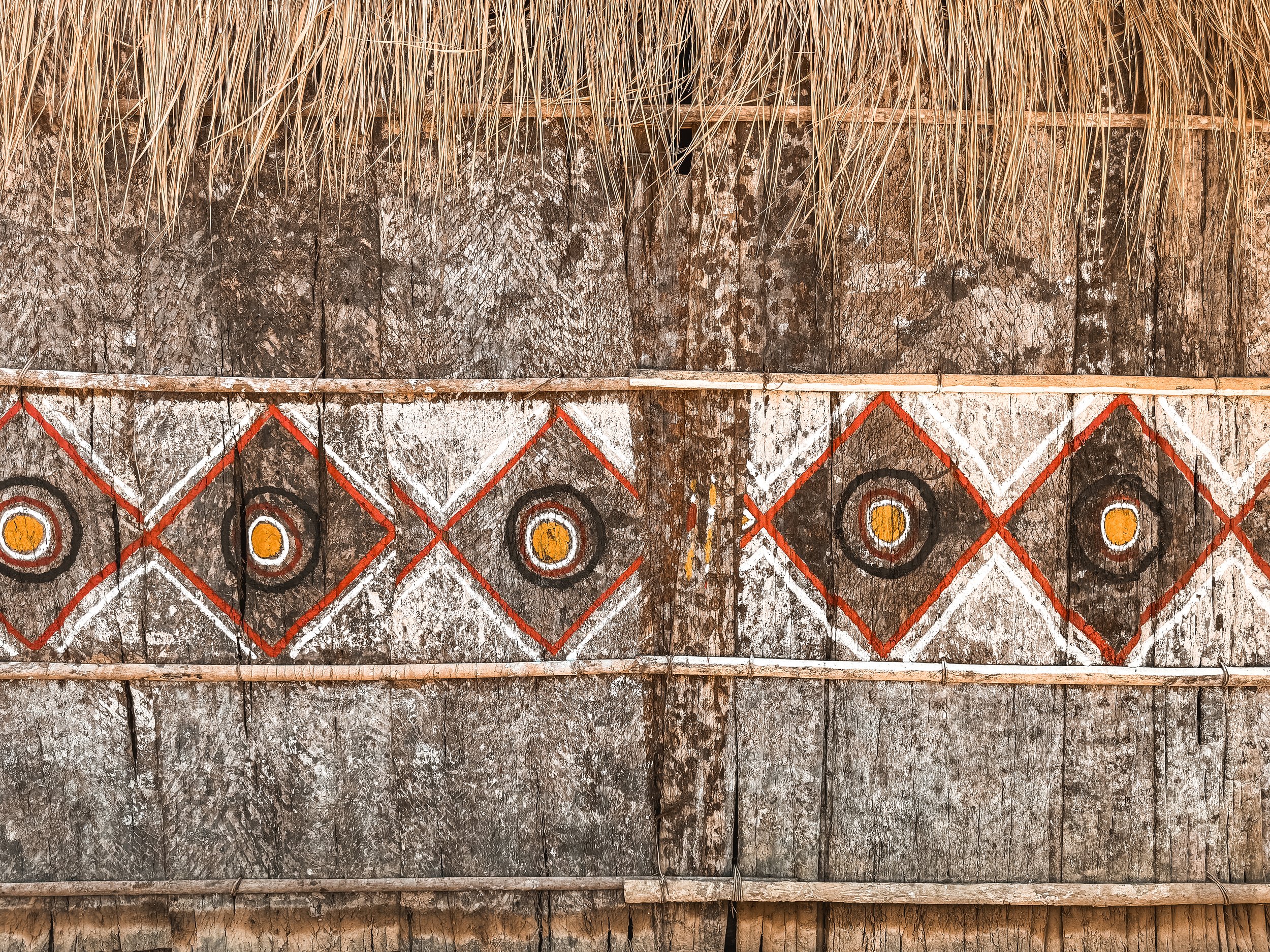
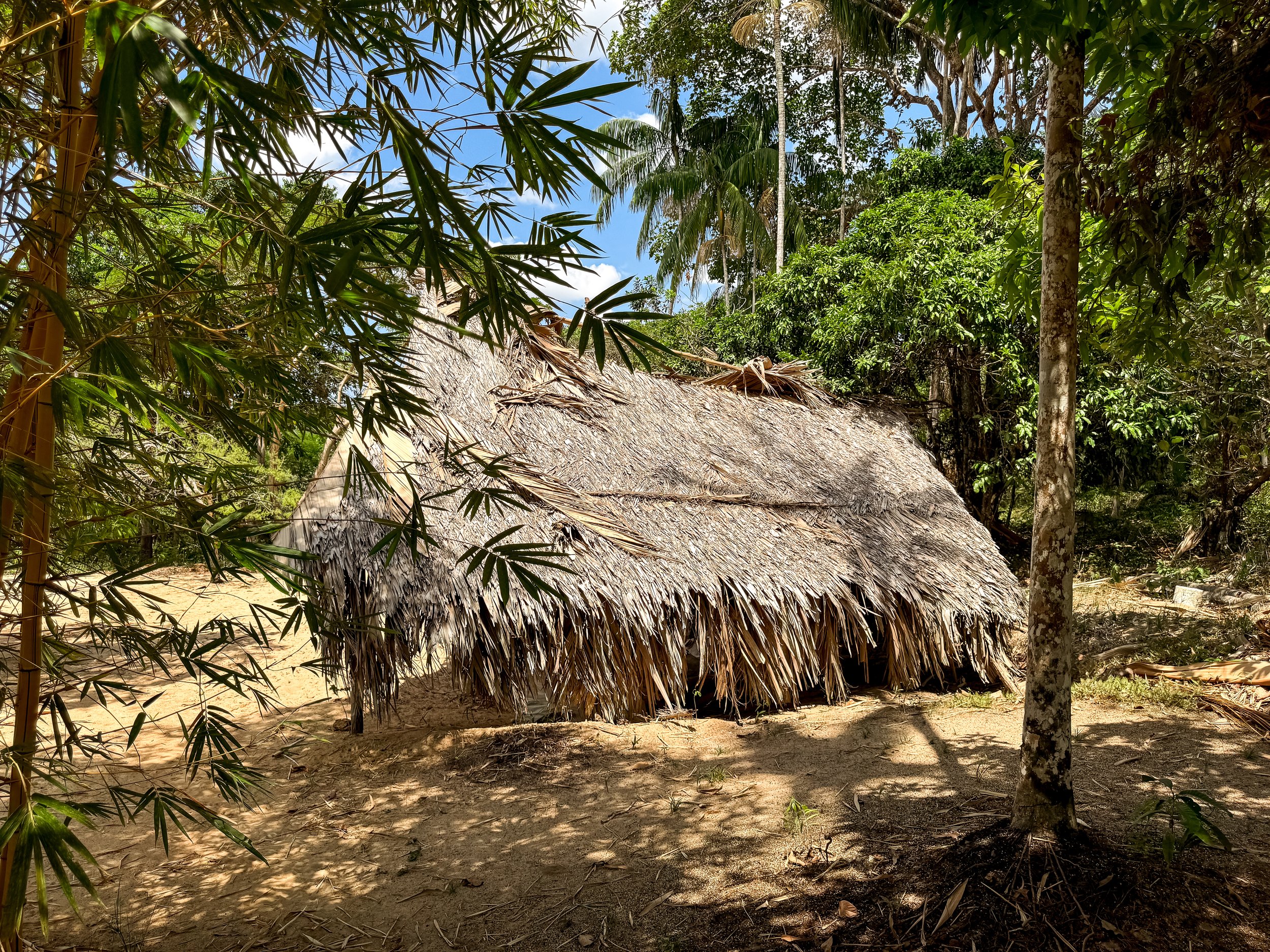
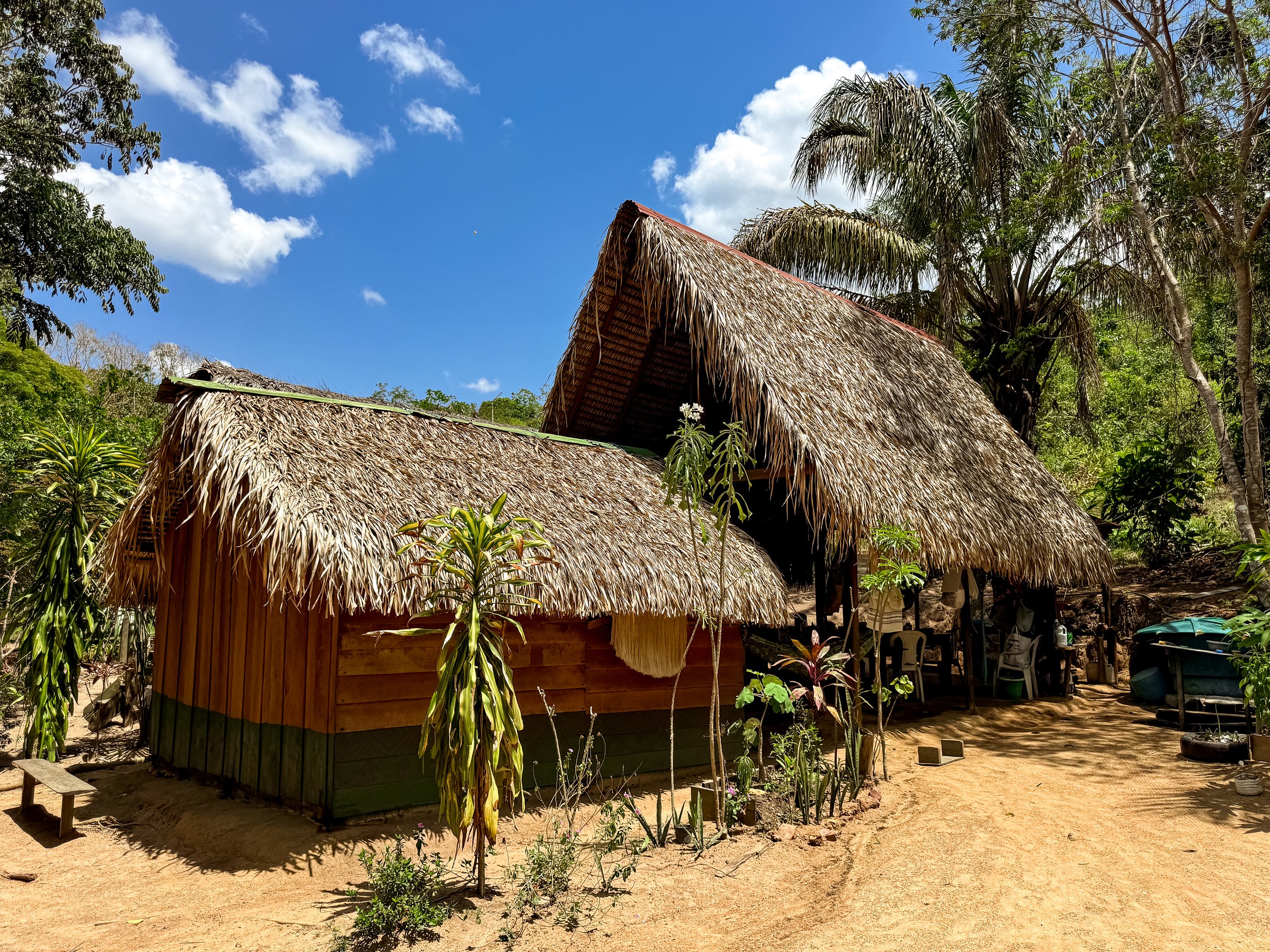
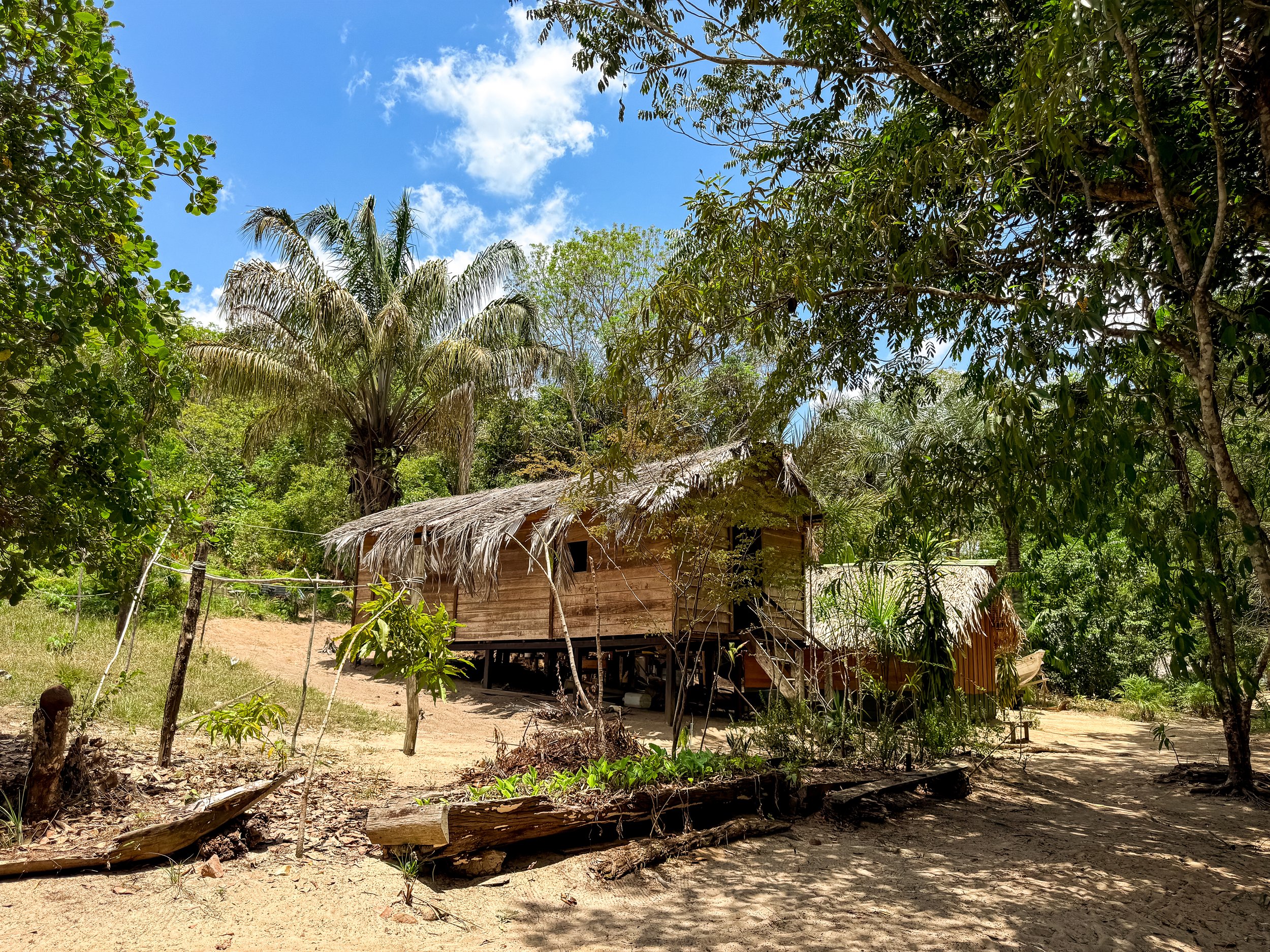
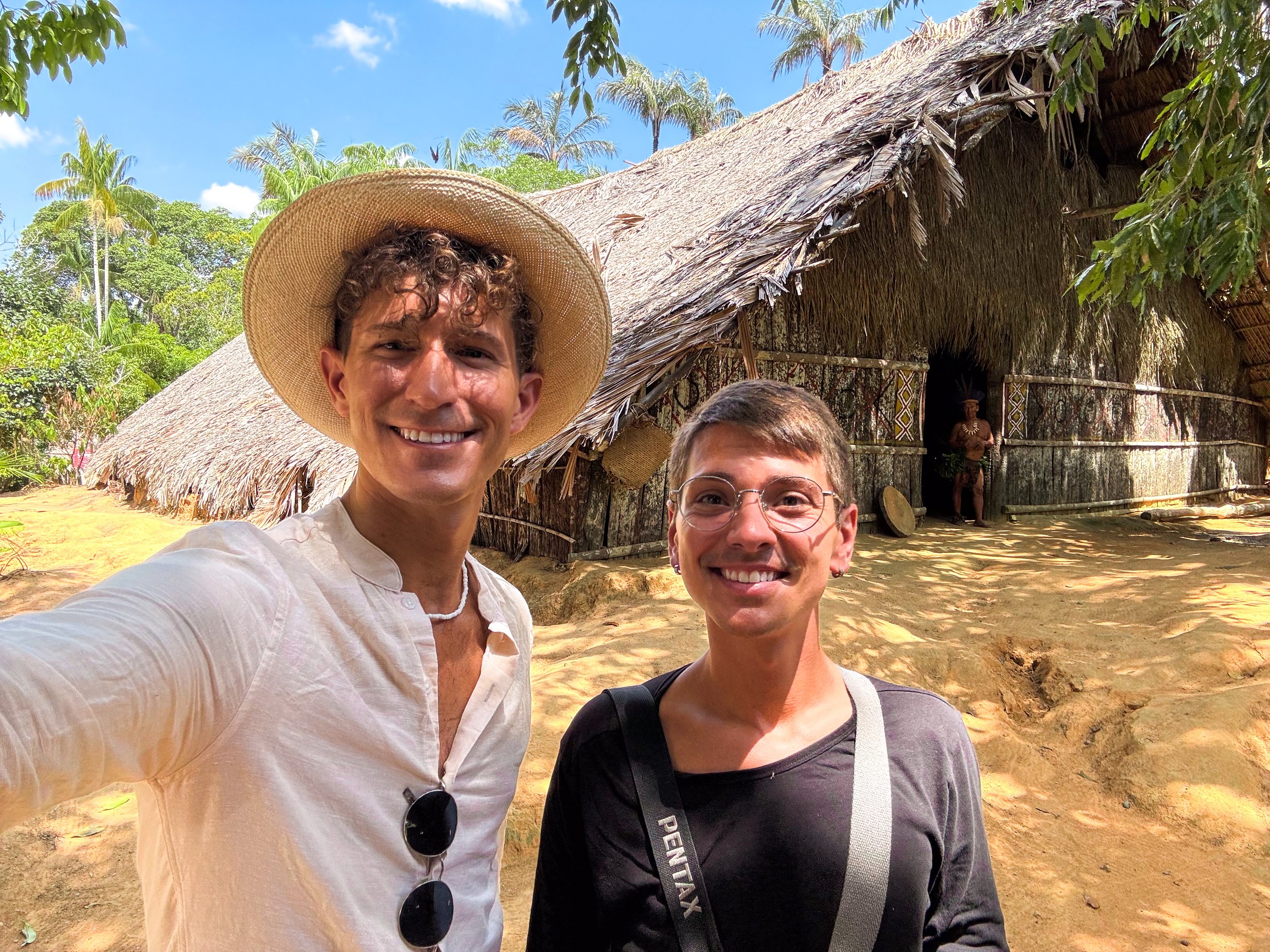
Day Three
We spent our third day in the Amazon at the indigenous village of Tatuyo for a ritual ceremony, bathing in a cold spring, fishing for piranha and spotting caiman.
As dawn broke, we woke up to warmth of the sun hitting our hammocks and met the crew downstairs for breakfast. Once we finished eating, we retuned to the Village of Tatuyo for the ceremonial ritual. The shaman and several others, dressed in ceremonial attire, greeted us at a large palm thatched pavilion with wooden walls painted in a snake like pattern. Women wore large feather earrings that covered their breasts, açaí bead necklaces and grass skirts. Men wore feather headpieces, caiman and jaguar teeth necklaces and skirts made of leaves. All of which had red painted patterns on their faces similar to the ones on the walls of the pavilion.
The shaman explained the ritual and ceremonial dances they were going to share with us. Each symbolized and important moment in a person’s life while the final dance is used for general celebrations. Led by two women, we were able to participate in the latter. Each dance was unique, involving different flute like musical instruments, songs and choreography. The group danced in circular, spiral and figure eight patterns as the smell on incense filled the pavilion.
Once the ritual ceremony had completed, we met our guide’s friend who showed us a cold spring where we bathed in the refreshingly cool water. After cooling off, we retuned to the boat for lunch and to hike along the river bank listening to macaws and howler monkeys in the jungle.
Near sunset, we cruised to a cove to fish for piranha! Using bamboo poles baited with meat, we splashed them around in the water to attract piranha. Within seconds one would bite, often tearing off the bait. Luckily our guide caught several piranha which the crew fried in farina for dinner.
After dark, we took the speedboat to look for caiman, shining a light along the shoreline looking for the glow of their eyes. The light attracted tiny fish that jumped out of the water, one landing in my lap (thankfully not a piranha). Within moments, we spotted a caiman lurking in the shallows. After a very full day, we returned to the riverboat and fell asleep of on deck in our hammocks.
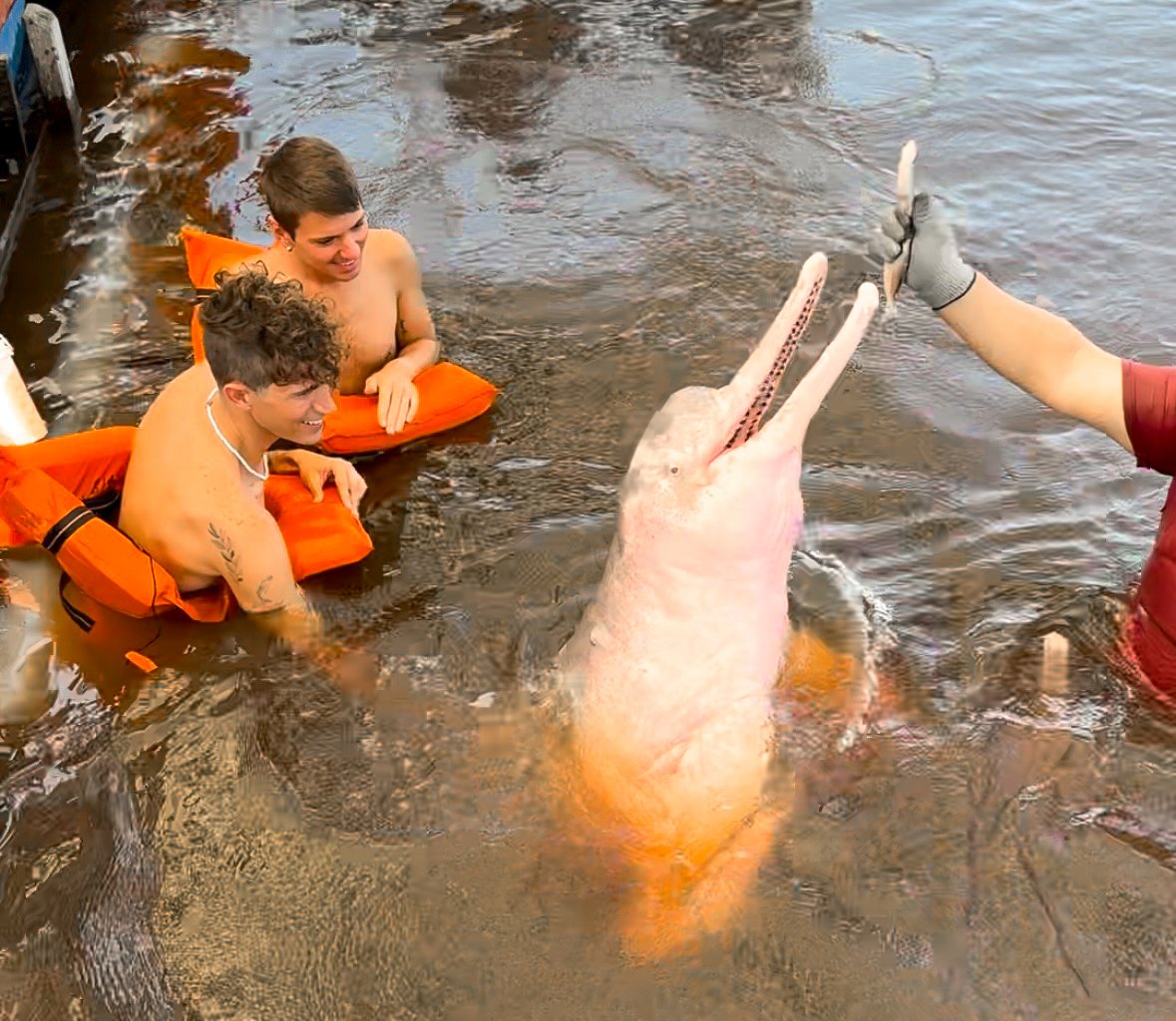
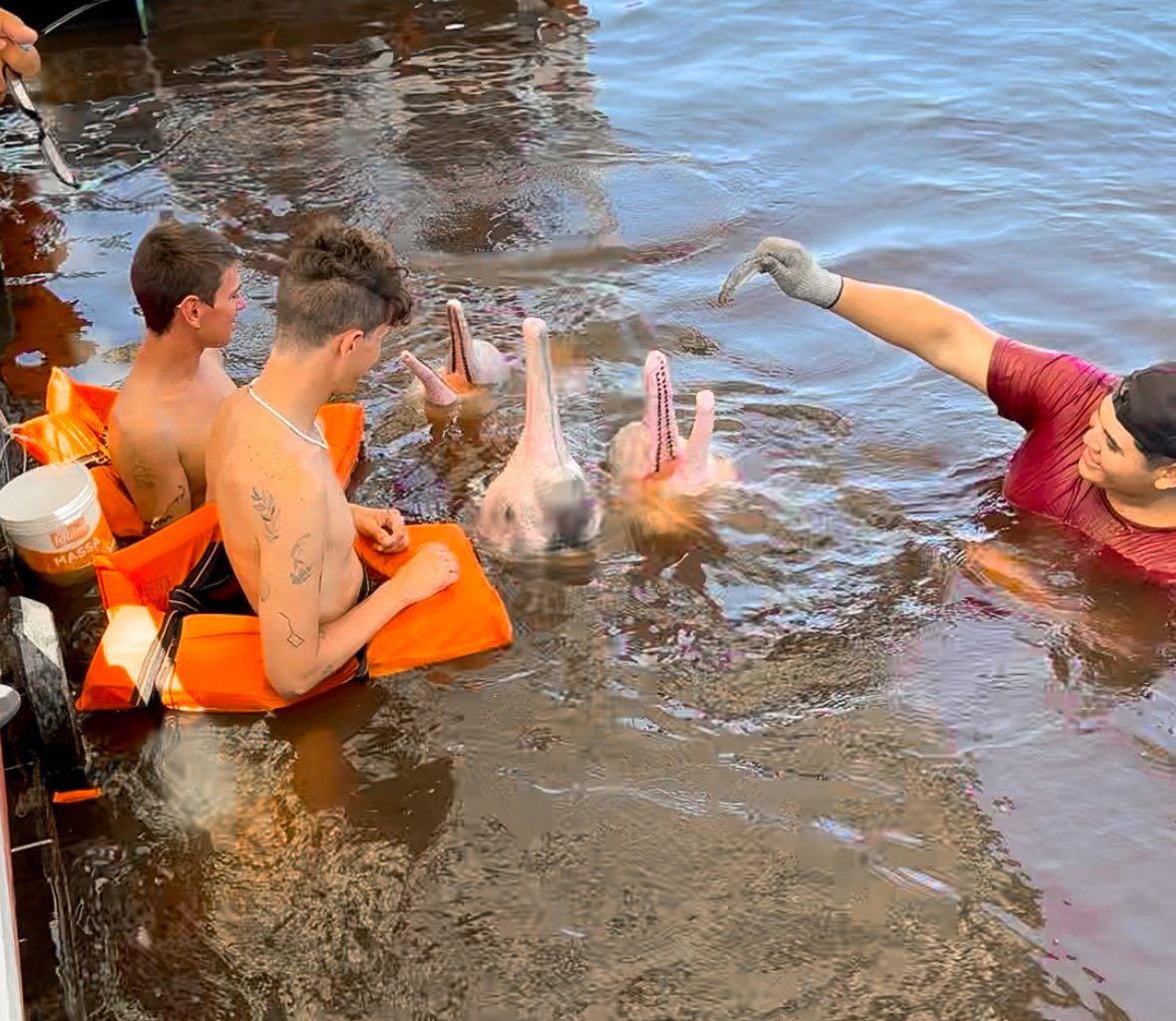
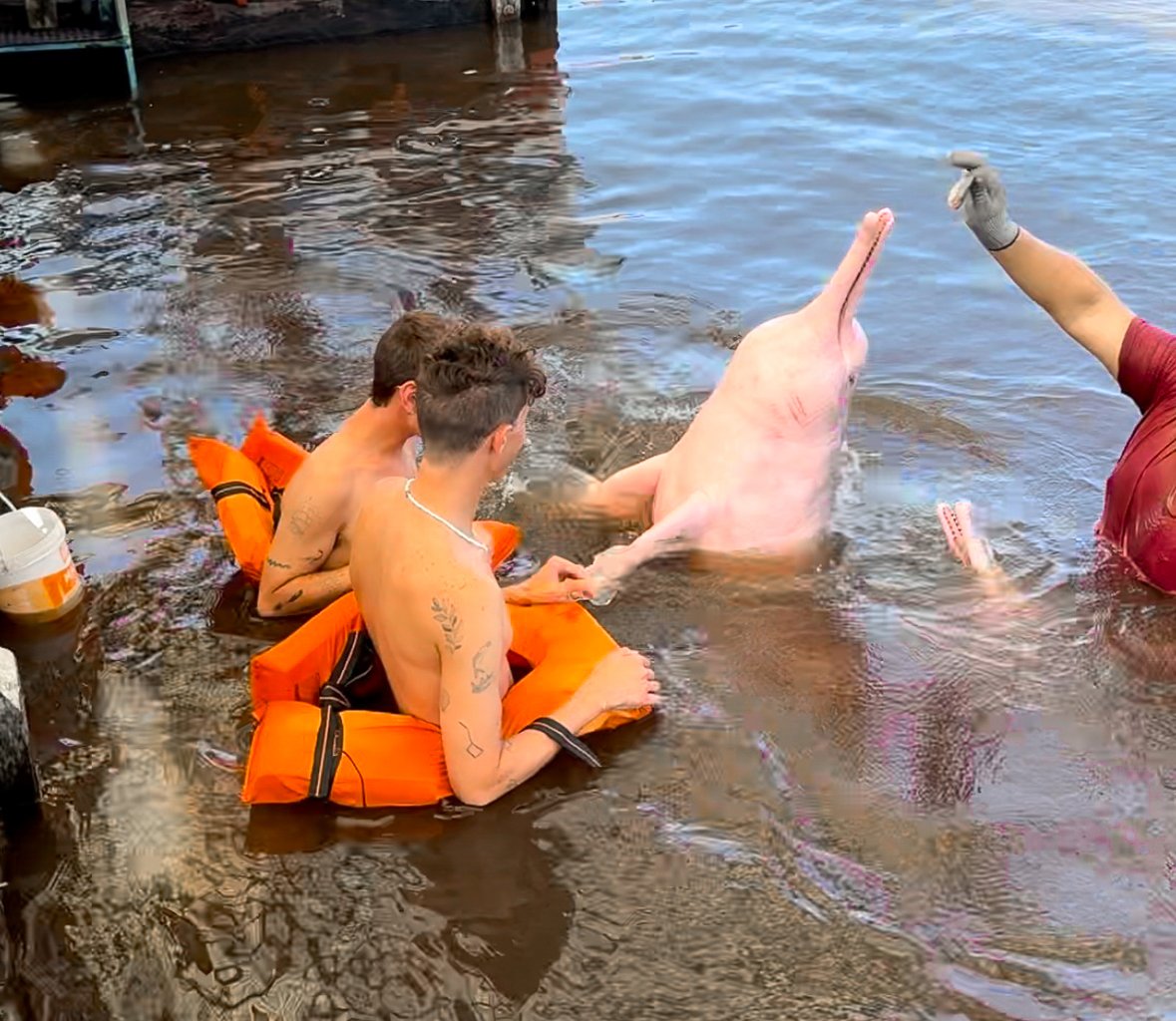
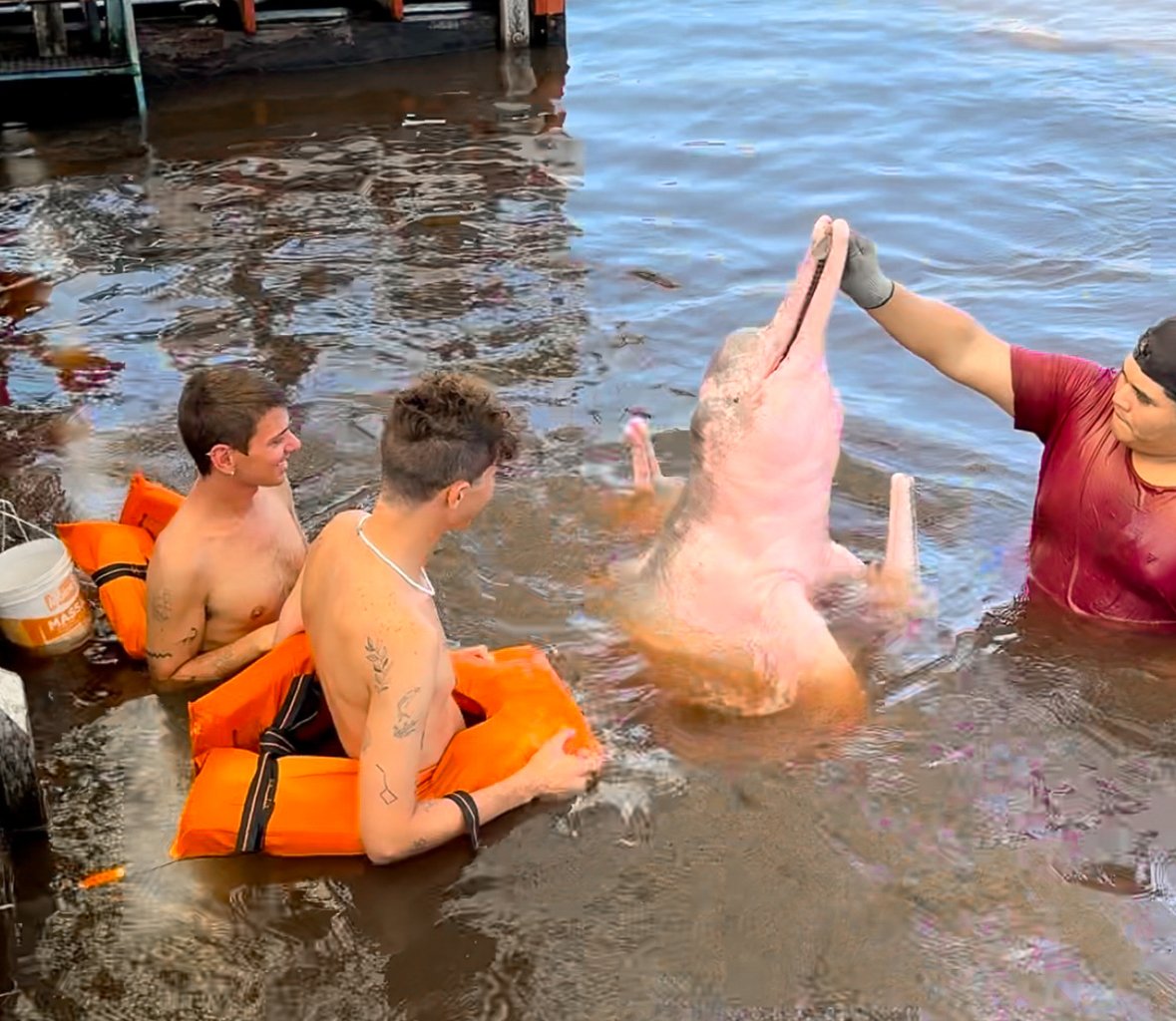

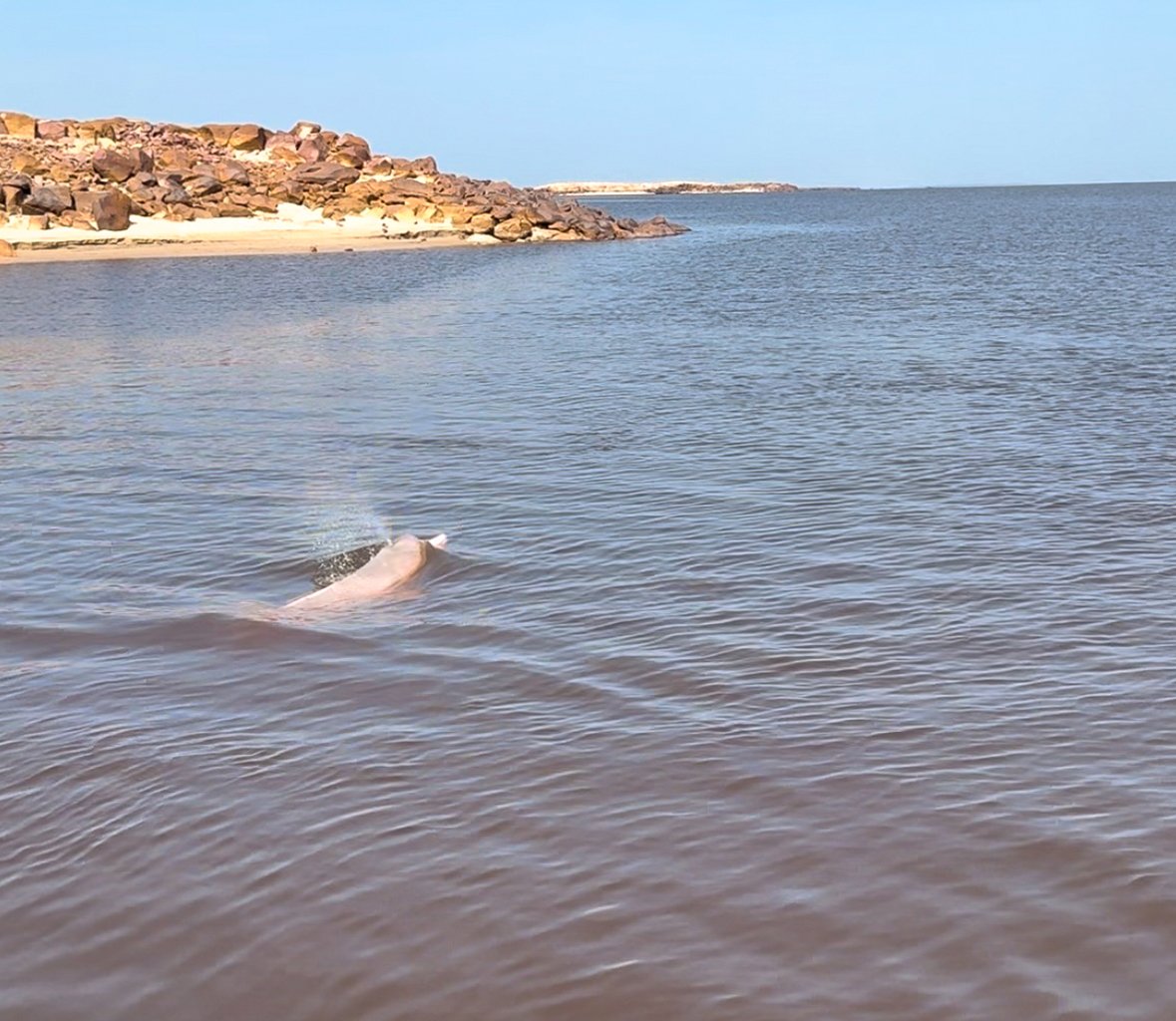
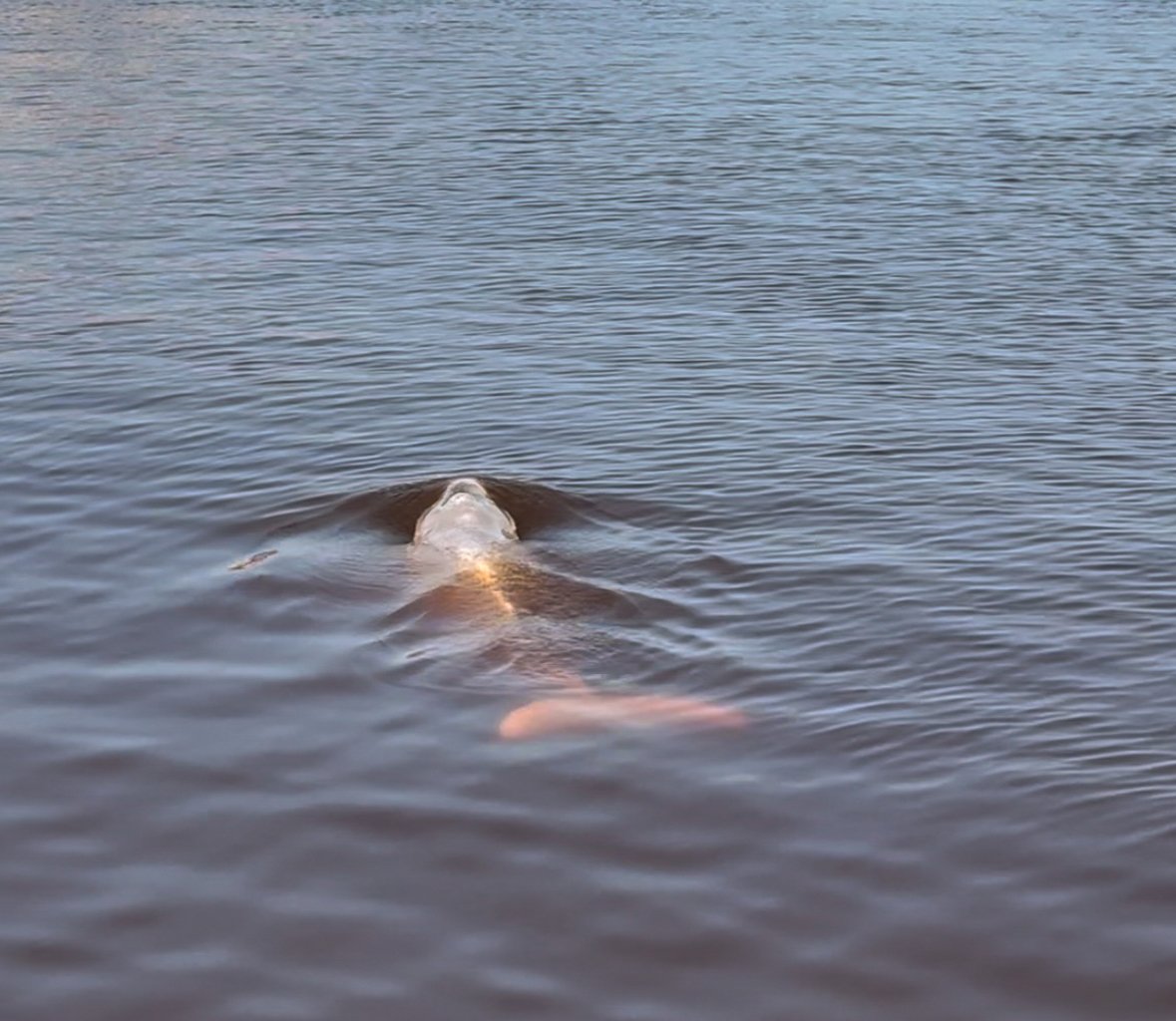
Day Four
We spent our fourth day in the Amazon swimming with pink river dolphins and relaxing at a beach before retuning to Manaus.
We woke up to breakfast with fresh fruit and tapioquinha while watching pink river dolphins swim around the boat. In a nearby cove, we watched as a handler fed the dolphins fish. Up close, we could admire them in detail. They have pink skin with grey splotches, long mouths lined with rows of nail like teeth and a wide upper fin. In the water, the dolphins swam around our legs, poked their heads up and swam off when fed. It was truly an incredible Amazonian experience!
After swimming with the dolphins, the crew began preparing lunch, tambaqui de banda. As the fish grilled, we stopped to swim at a white sand beach and enjoyed the last meal onboard the boat. After lunch, we napped in our hammocks as we cruised back to Manaus.
Good to Know:
Cell Service. As we expected, this area is very remote, there is little to no cell service or data outside of Manaus.
Mosquitos. We brought a mosquito net specifically to cover our hammock at night. In addition, we wore copious amounts of insect repellants when in the jungle.
Piranha. The carnivorous fish are generally not attracted to humans. Still, it’s best to avoid entering the water with an open wound, making sudden movements and splashing around.
Pink River Dolphins. Unlike many “dolphin encounters” the pink river dolphins are protected and remain wild. It’s regulated how many fish can be fed to them per day as not to build a dependency.
Cost. Multi night Amazon tours are not cheap. They can range from several hundred dollars well into the thousands per person.
Where to Book. We booked our tour with Amazon Amazing Tours on Get Your Guide. It was one of the more cost effective tours and well worth the experience!
Amazonian Cuisine
A huge part of our time in the Amazon was trying the cuisine! The flavors of the Amazon are as vast as the rainforest itself including tropical fruits, starchy root vegetables, fresh water river fish and even insects.
Amazonian Fruit
Açaí. The tiny Amazonian super fruit from the Açaí palm. By itself, it has a bitter blackberry like flavor. It’s often served as a sorbet with other fruits, granola and honey. Its pits are used for jewelry and decor.
Cupuaçu. A brown podlike fruit with a with seeded spongy interior. It’s often processed into a cream and added to drinks, deserts and açaí.
Tapereba. An Amazonian fruit with an orange skin and the flavor of a plum and mango but less sweet. It’s served in juices, ice cream, fresh or peeled and sautéed.
Brazil Nut. Technically not a fruit, however the nut is sold at some food carts and stands around Manaus.
Tropical Juices. Many Amazonian fruits are used to make tropical juices including avocado, cashew, maracujá and guava.
Avocado Juice. Avocado blended with milk and sugar. If you’ve never had it, it sounds strange but is tasty and mildly addicting.
Cashew Juice. Juice made from the cashew fruit, the source of the cashew nut. It has a unique, slightly acrid, sweet flavor. When underripe, it has a mango like flavor.
Maracujá Juice. The sweet sour juice from passion fruit, with seeds and all.
Guava Juice. Juice made from guava, it has a tangy plumelike flavory and creamy texture.
Other common fruits are watermelon, papaya, pineapple, mango, banana, orange and coconut.
Amazonian Fish
Tambaqui. A popular freshwater fish from the Amazonian rivers. At restaurants, halves of the fish called Tambaqui Banda, are often served grilled or fried for multiple people to share. Its ribs (yes literal ribs), called Tambaqui Costela, are served as individual portions either grilled or fried. The fish can also be prepared in a savory vegetable stew called Caldeirada de Tambaqui. We tried it all ways and it’s easily one of the most flavorful fish we’ve ever tasted!
Pirarucu. A very large freshwater fish from the Amazonian rivers. It’s a common menu item at restaurants served alone or inside various dishes. It has a tender, buttery texture and the flavor of a white fish. It’s locally known as the “Cod of the Amazon.” Filets measuring a few inches to several feet long can be bought fresh or salted from the fish market.
Red Bellied Piranha. The well known tiny carnivorous Amazonian fish with razor like teeth. They are served fried or grilled and have a tender flavor similar to any white fish. Multiple are typically served at one since each only has a few bites of meat.
Amazonian Dishes
Farinha. An Amazonian “grain” specific to the region made from ground cassava prepared in fine to large granules. It’s served as a side and topping on many dishes.
Tapioquinha. A Brazilian style crepe made from tapioca flower and filled with Amazonian fruits, eggs, cheese or meats. It’s a popular breakfast dish.
Ants. Though not common, they are a delicacy stemming from Indigenous Amazonian tribes. The two most popular are Saúva Ants and Maniwara Ants. The first is a burgundy colored leaf cutter ant with a tangy grassy flavor. The second is a larger tan ant with a sweet toasty flavor.
Vatapá. A creamy paste like strew made with coconut milk, shrimp and tomatoes. It has a savory, somewhat bitter and starchy flavor.
Tacacá. A soup made from boiled cassava broth, cassava gel, herbal jambu leaves and salted shrimp. It’s traditionally served in a calabash (a bowl made from a gourd) and sipped on using a wooden skewer to eat the jambu greens and shrimp. It’s popular in Amazonia, even on scorching hot days.
Amazonian Beverages
Guaraná Antarctica. A very popular soda made from the guaraná fruit. It has a bubbly honey like flavor.
Guaraná Baré. Manaus’s version of Guaraná Antartica. It has a similar flavor, it is less carbonated and slightly sweeter.
Guaraná Smoothie. A smoothie made with guaraná syrup and power mixed with peanuts and milks.
Caipirinha. A cocktail made with Cachaça (a Brazilian rum), muddled limes, sugar and ice. It’s commonly served at bars in its classic form or with Amazonian fruit flavors.
Manaus
Manaus is a city in the heart of the Brazilian Amazon where concrete jungle meets literal jungle. It’s an adventurous hub for Amazonian excursions including multi-night river tours, cultural experiences with indigenous tribes, rainforest hikes and swimming with pink river dolphins. The city is famed across the region for its Amazonian markets, restaurants and historic architecture dating back to the “rubber boom” of the late 1800s.






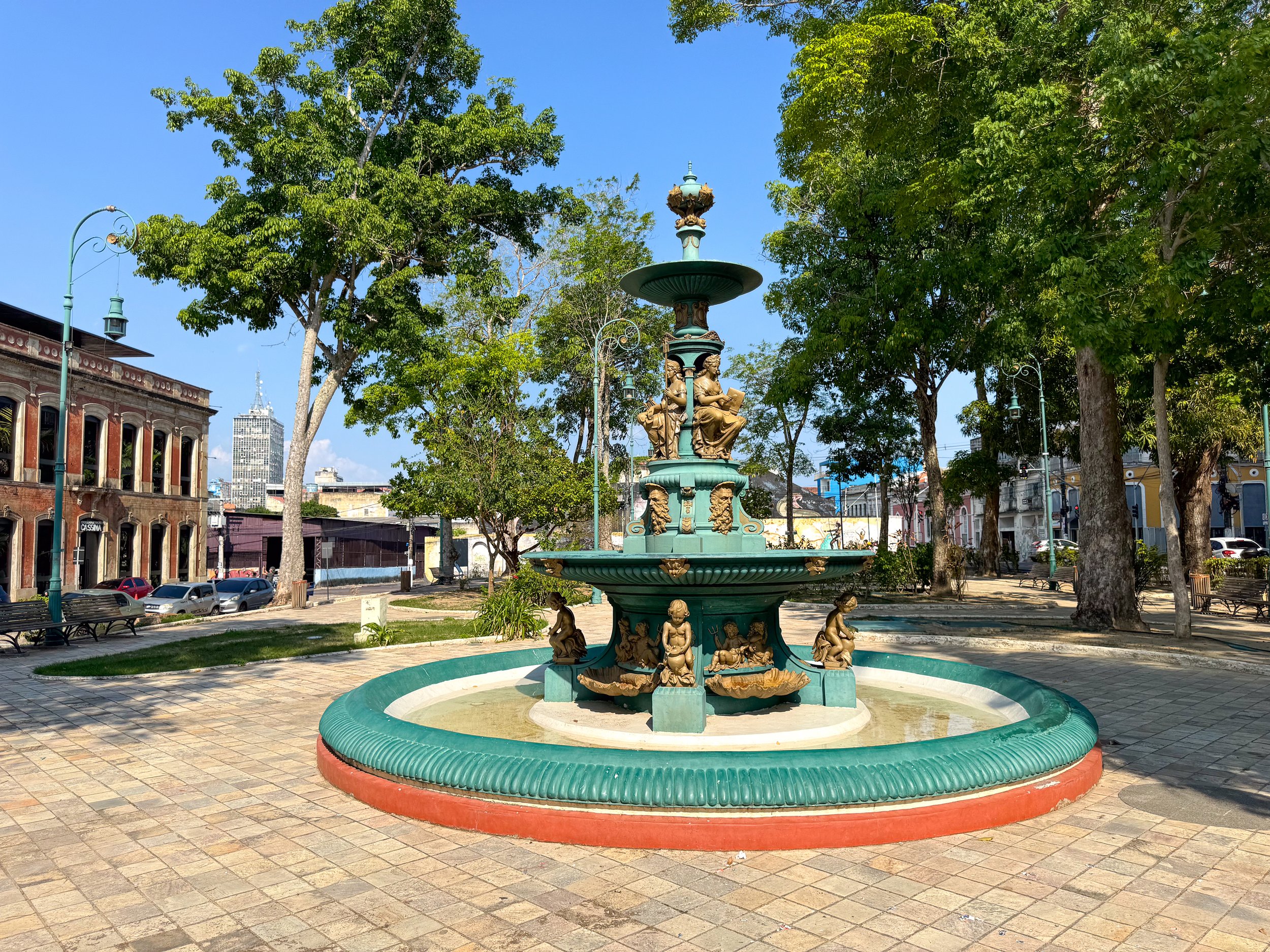
Sights
There are many sights to see around Manaus, especially in the city’s central neighborhood including historic landmarks, treelined plazas and indigenous themed murals. Across the city are nature parks, beaches and harbors overlooking the river.
El Centro. The historic neighborhood of Manaus with tree lined streets, pink stone roads, beautiful plazas, countless food carts, Amazonian restaurants and colorful Portuguese style architecture decorated with tiled facades.
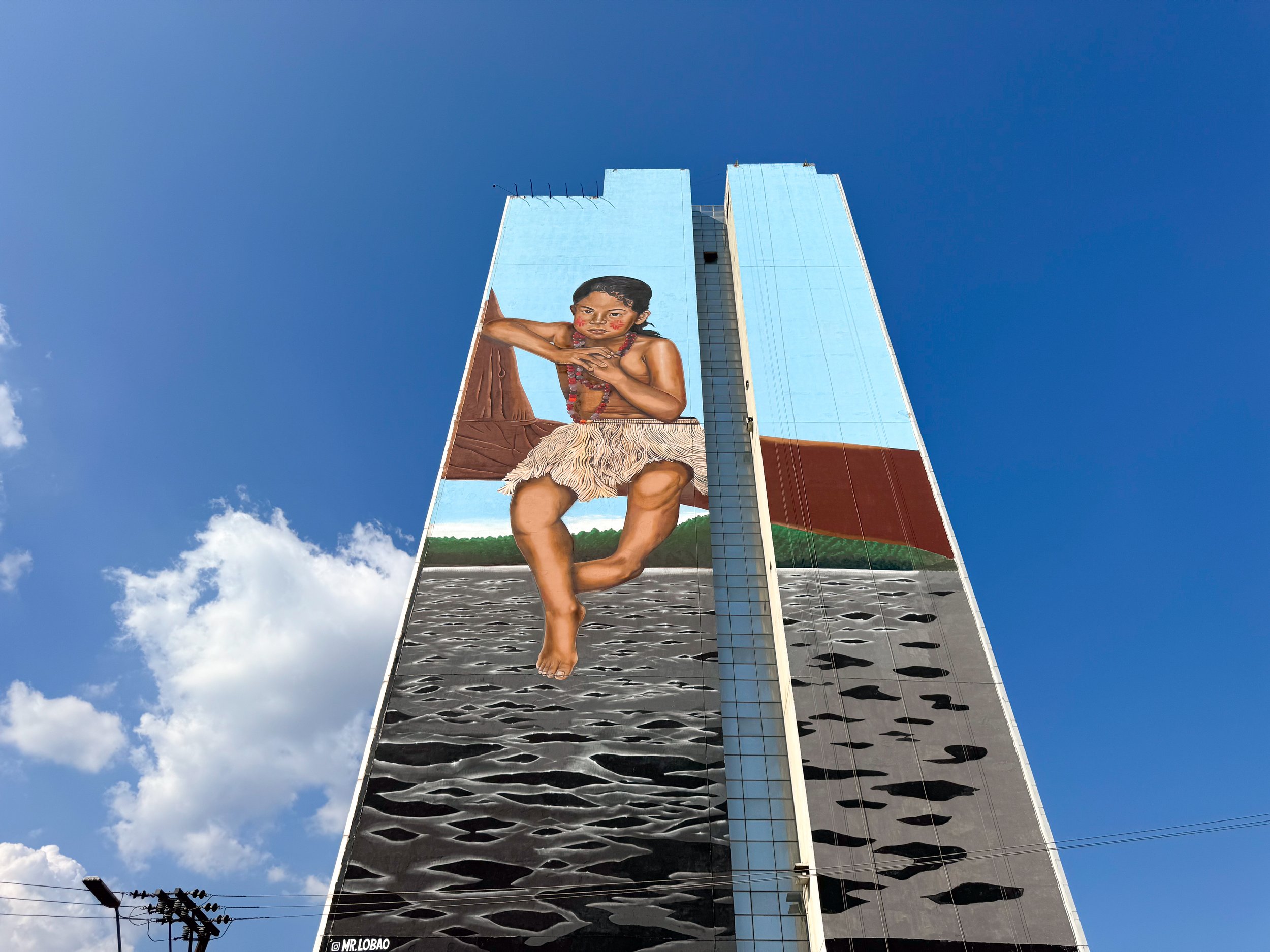
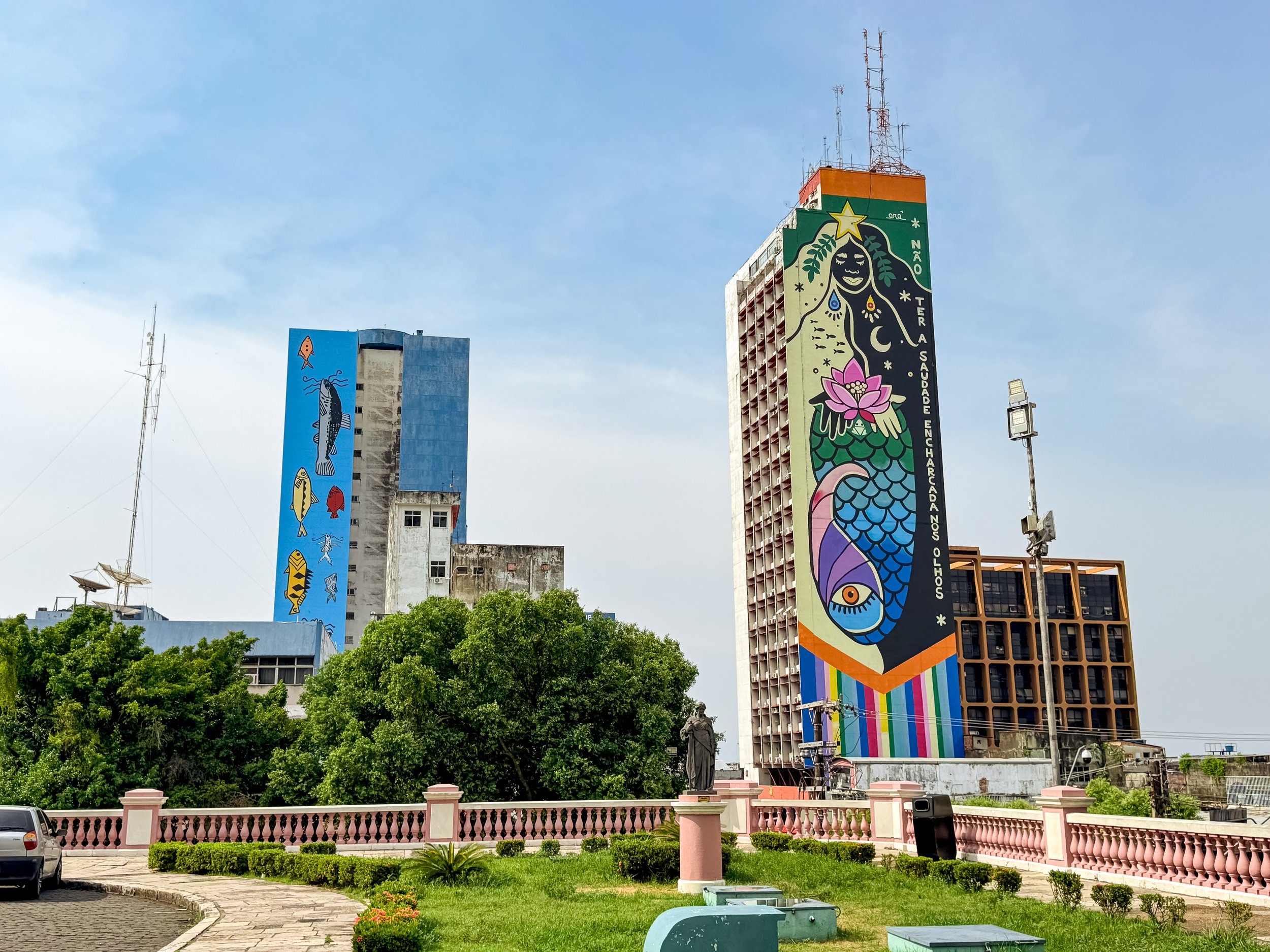
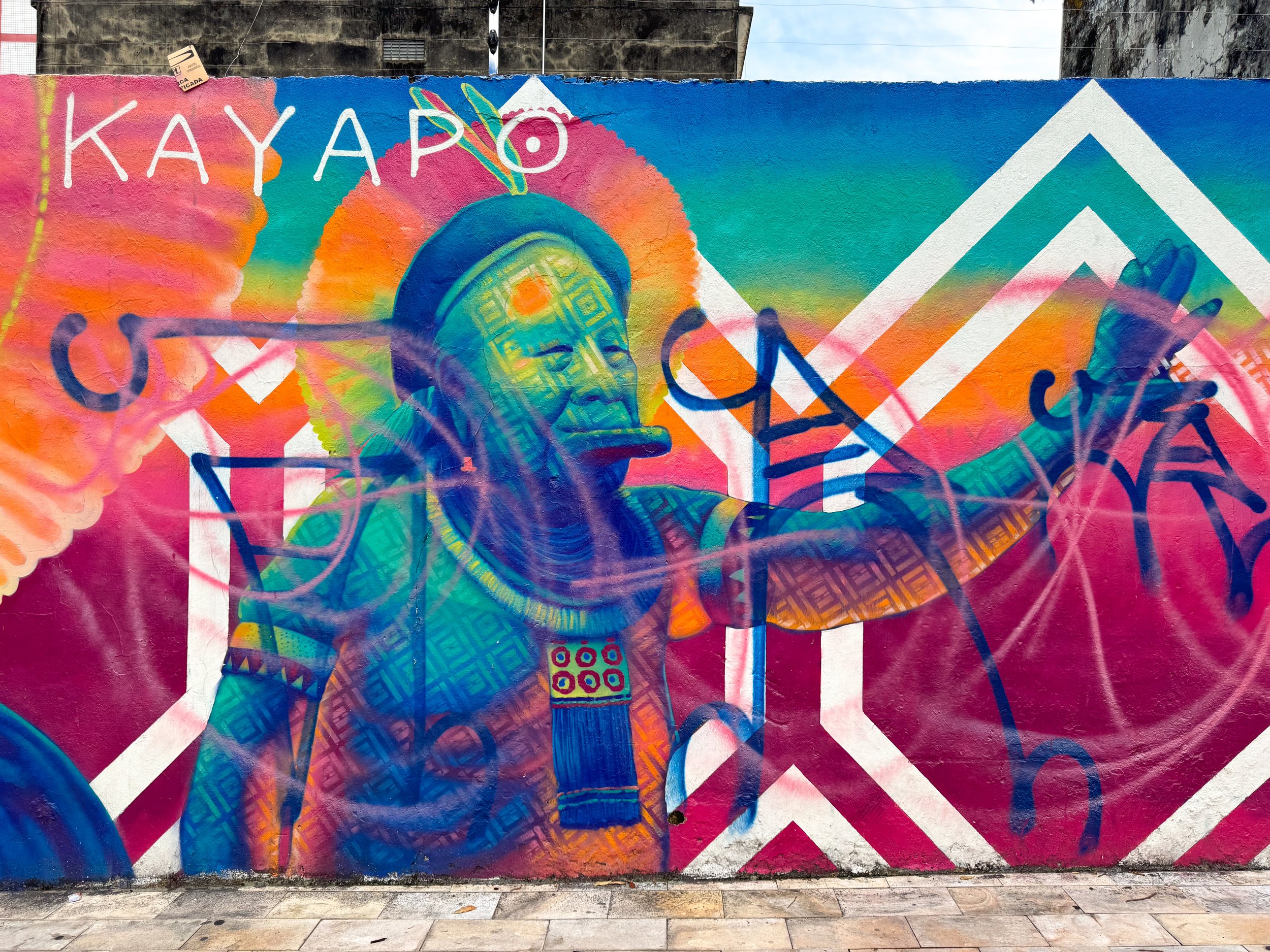
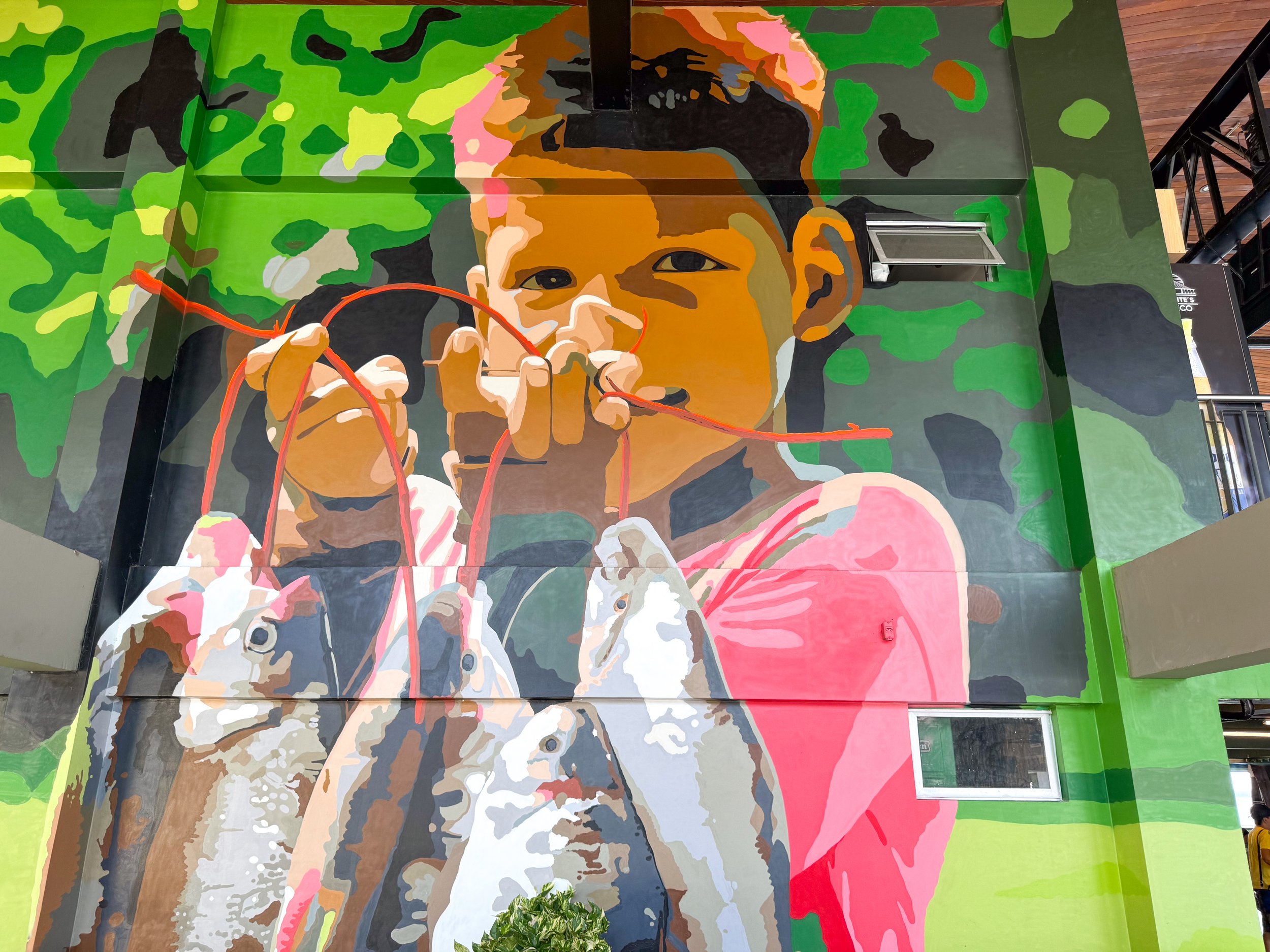
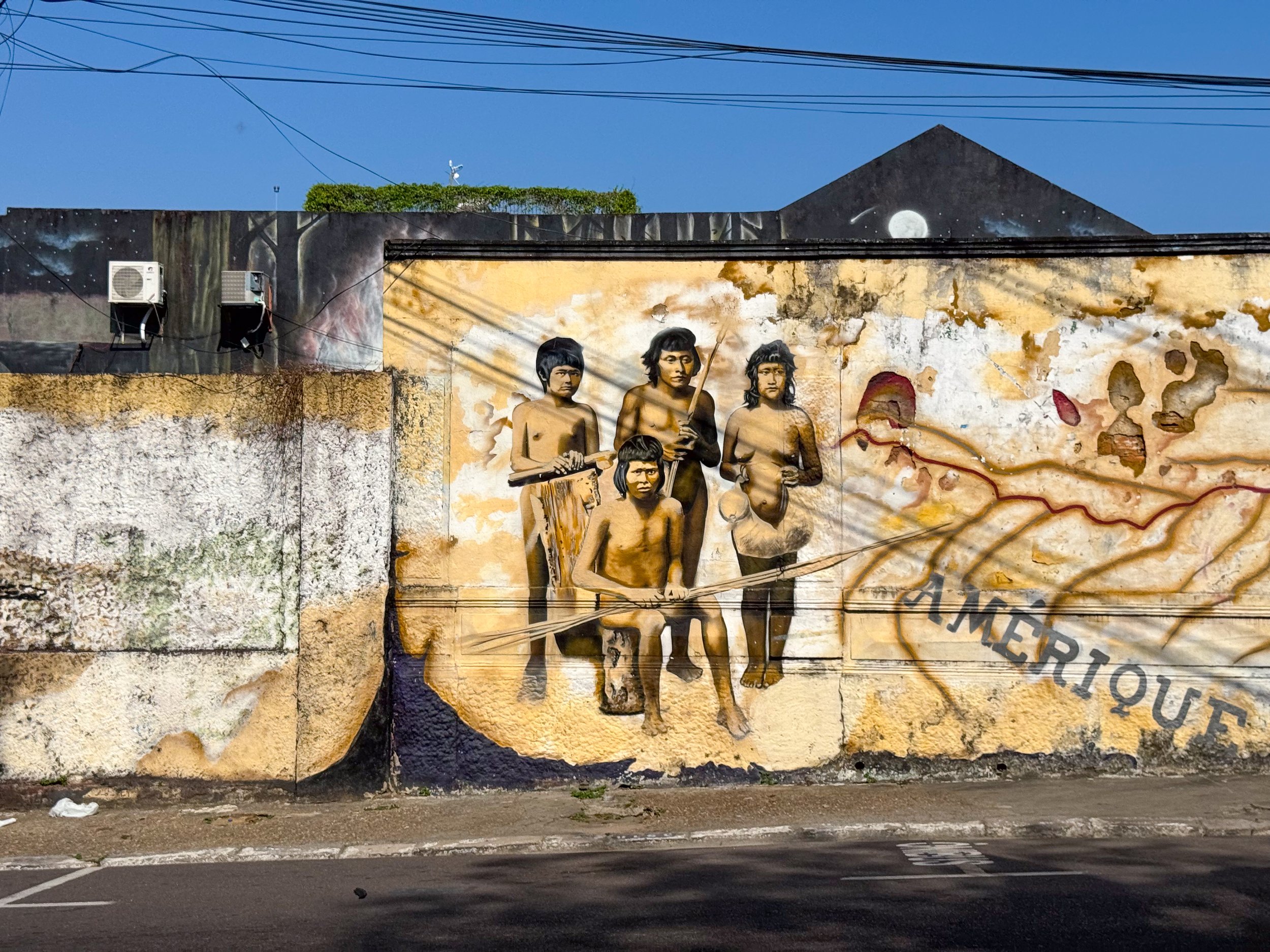
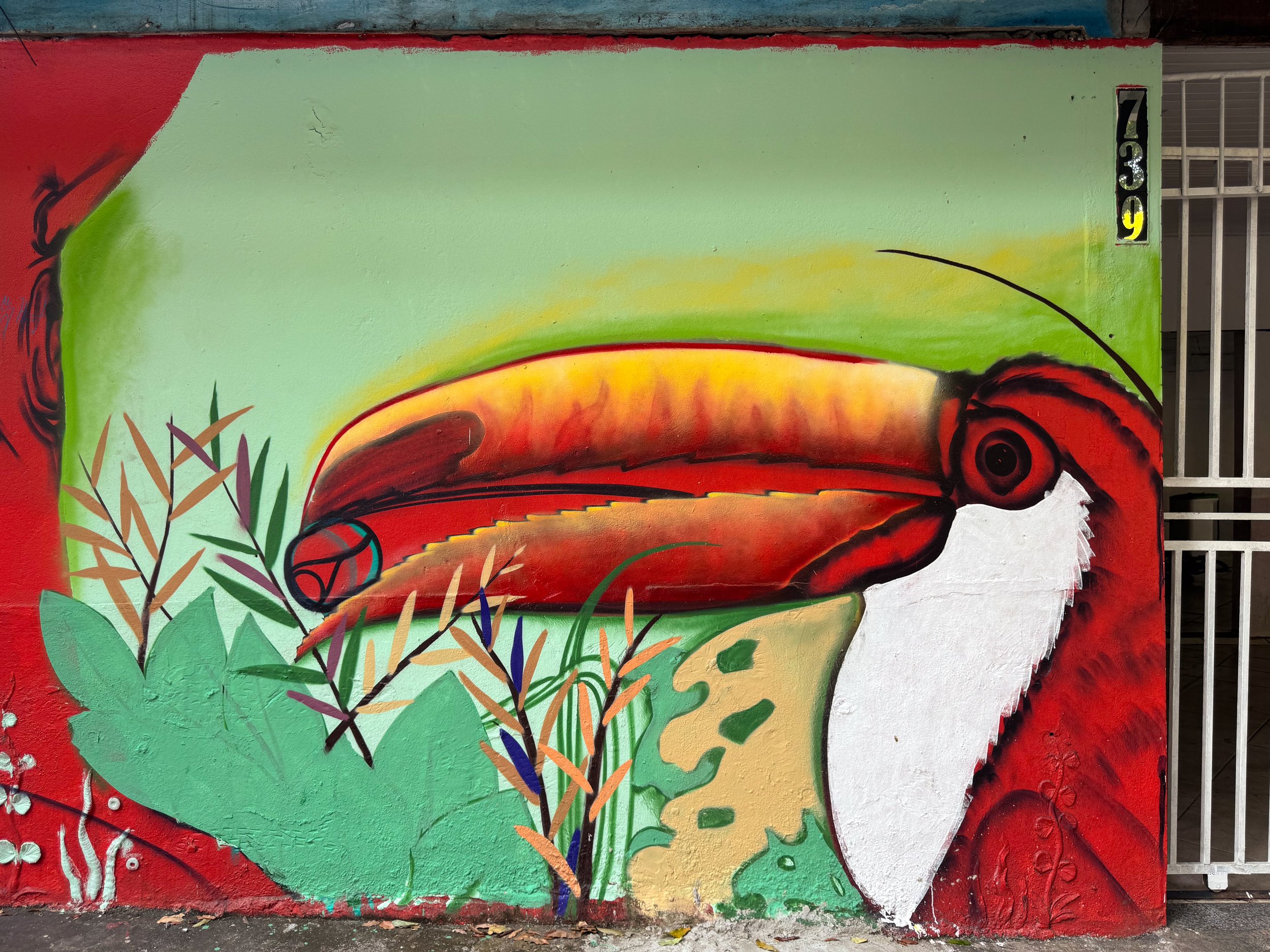

Indigenous Artwork. There is indigenous themed artwork and murals across the city, some spanning the height of entire skyscrapers. The best place to admire the art is around the streets of El Centro.
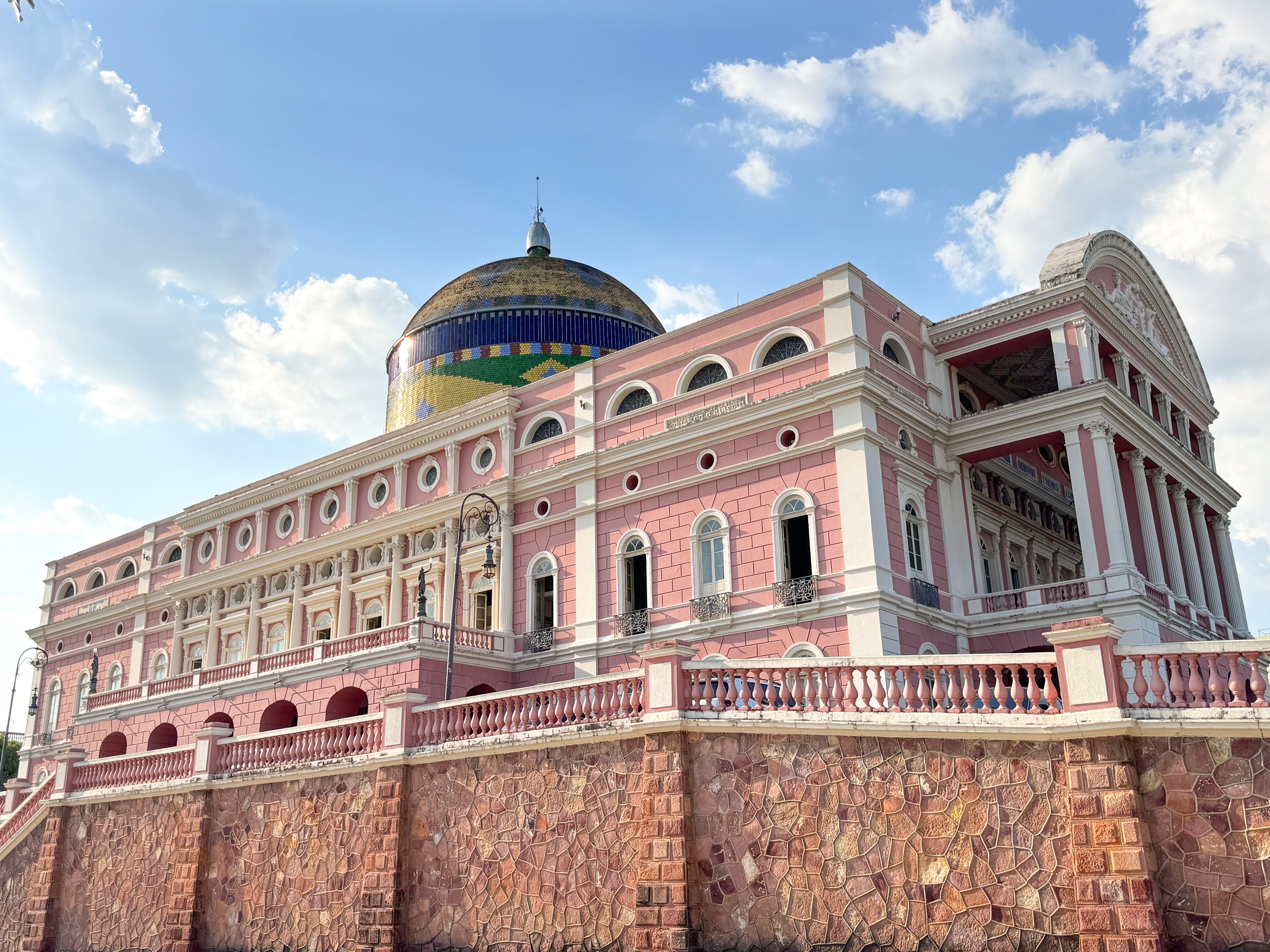
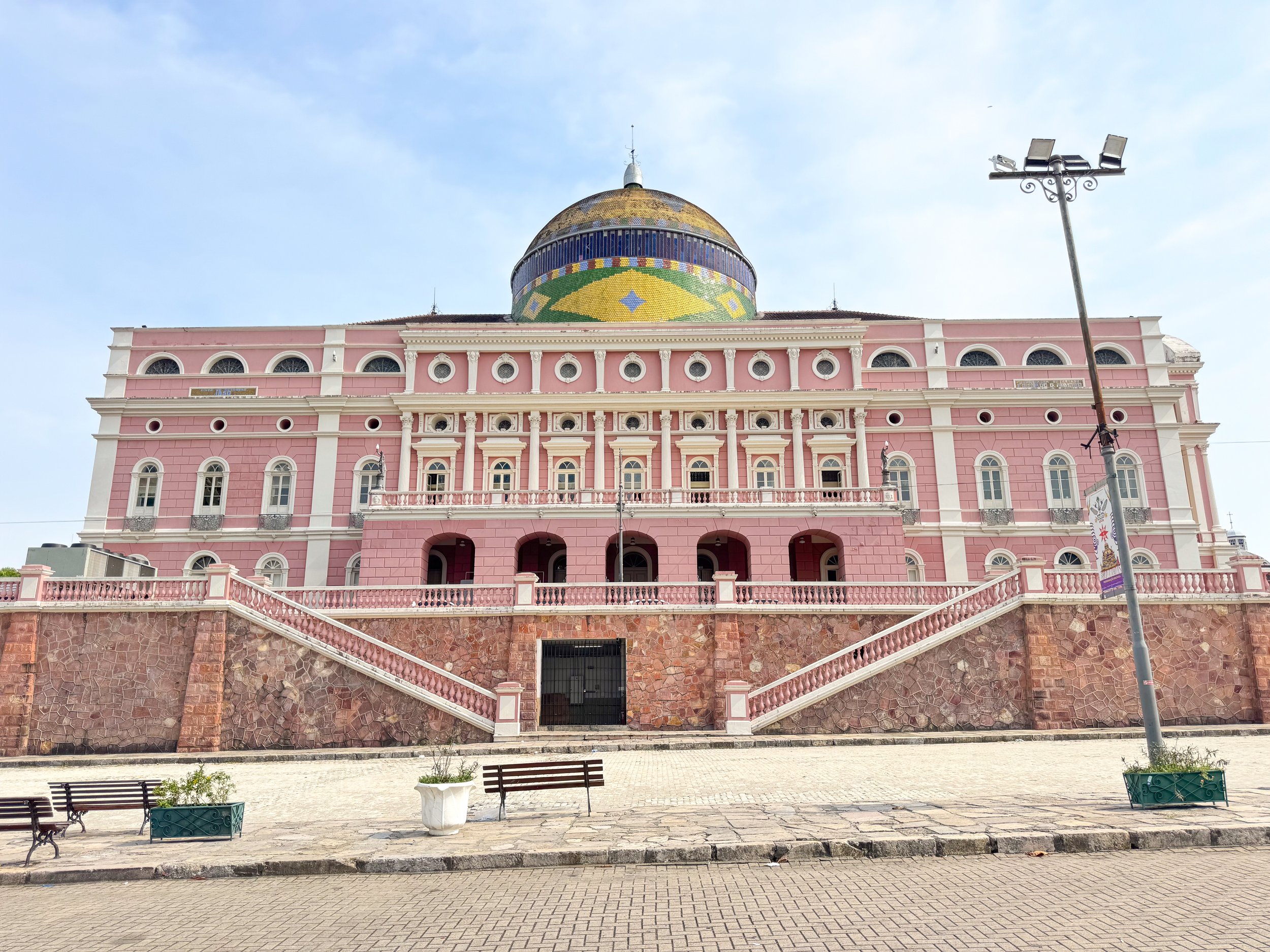
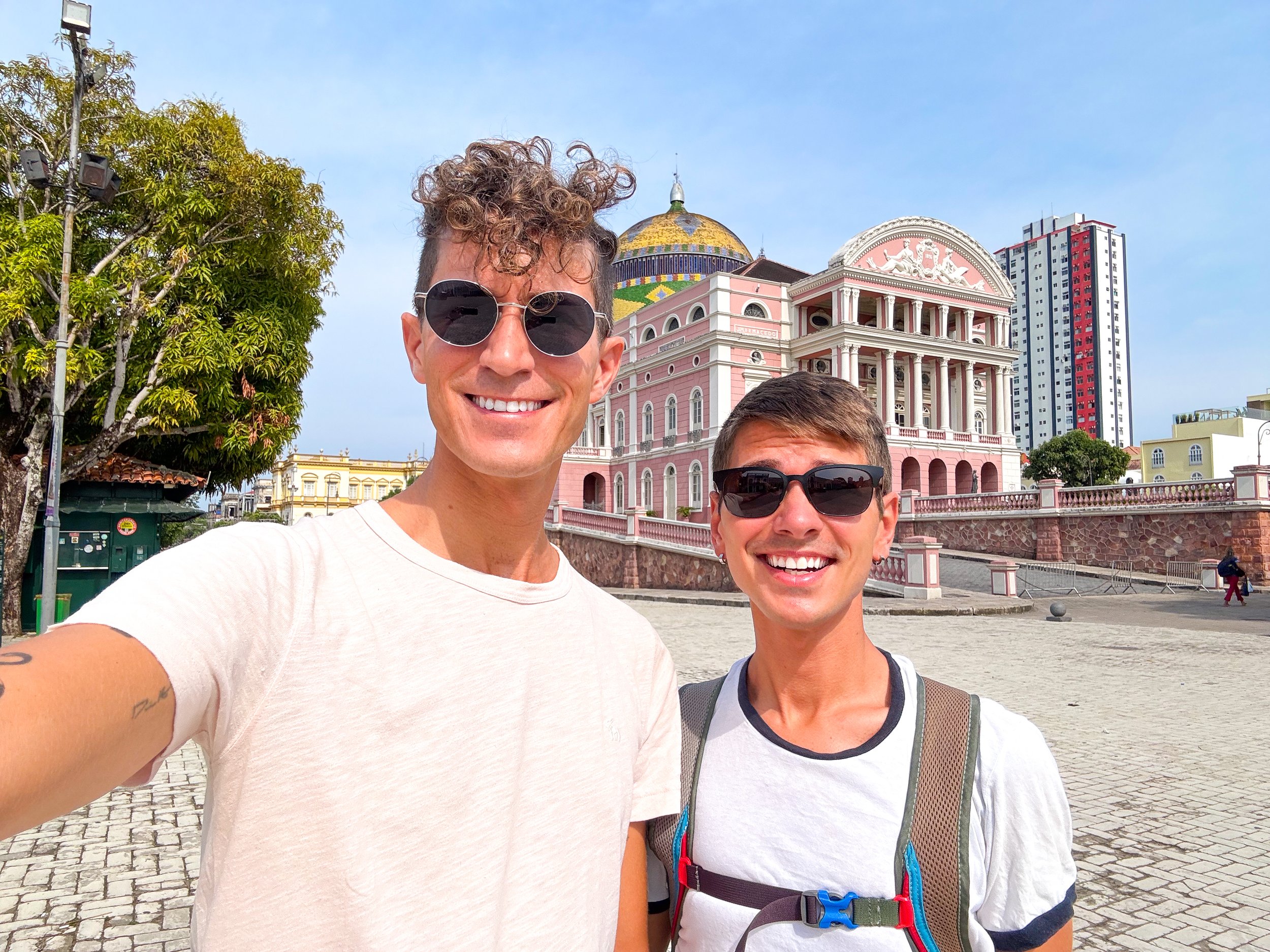

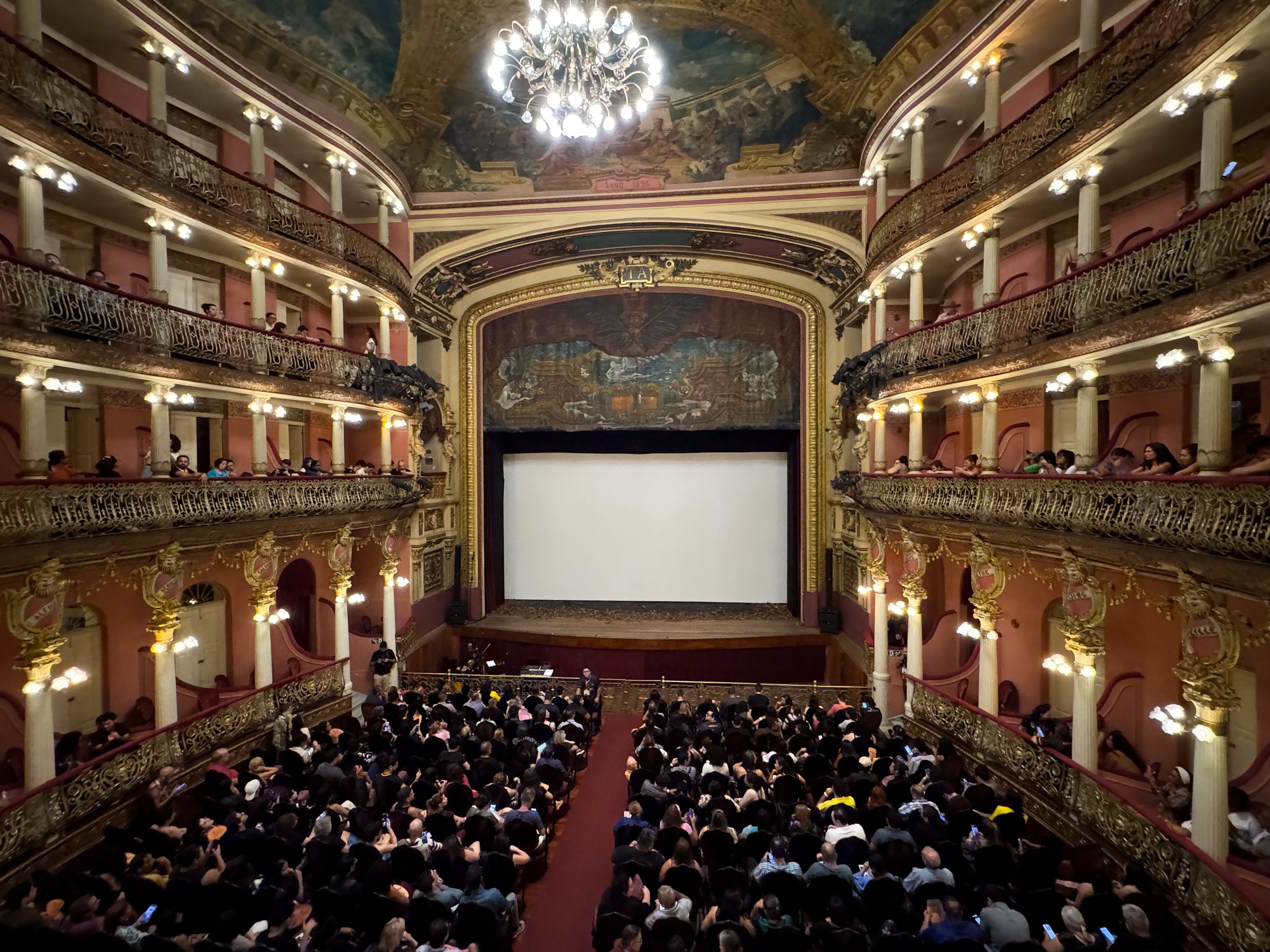
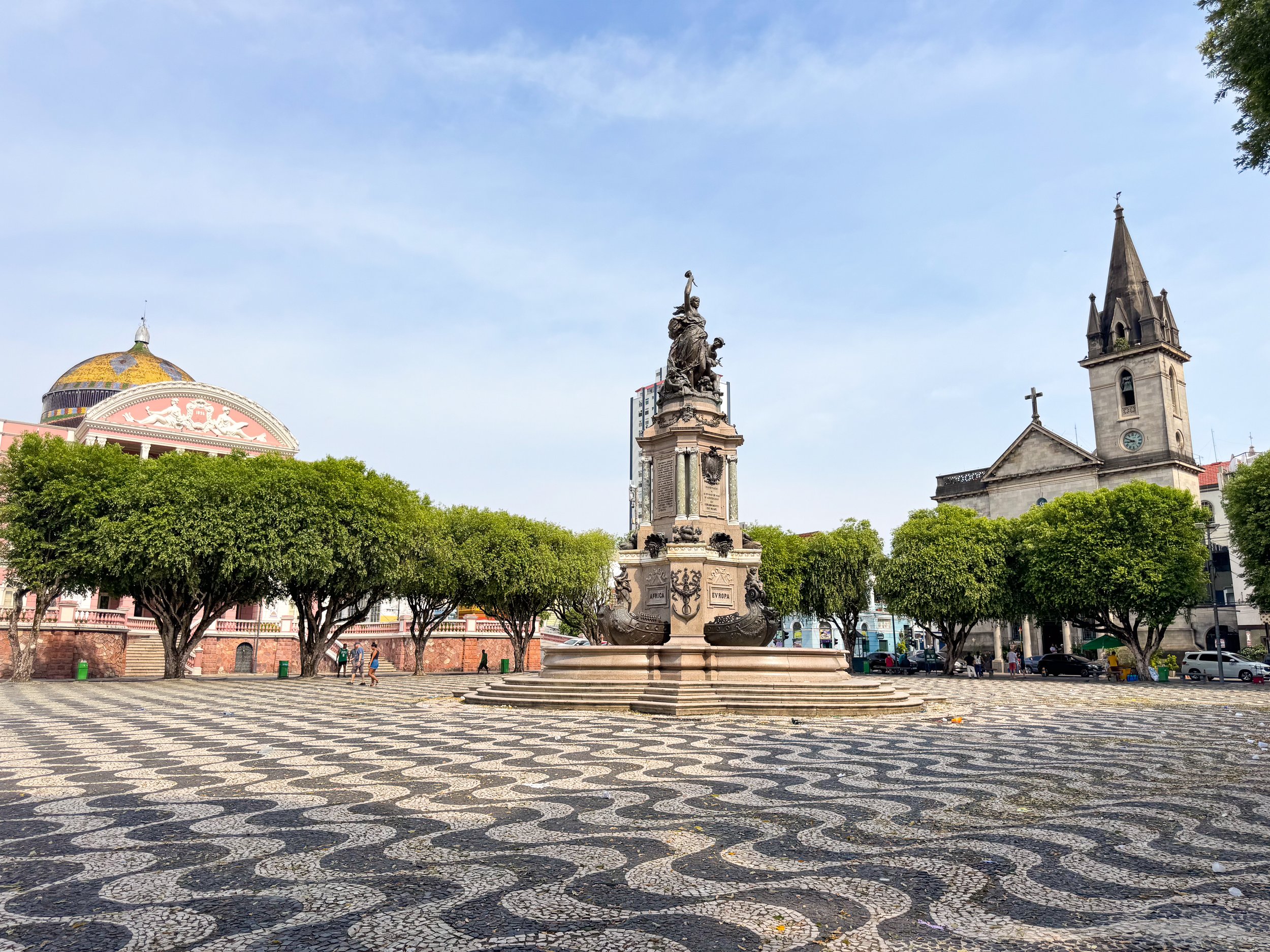
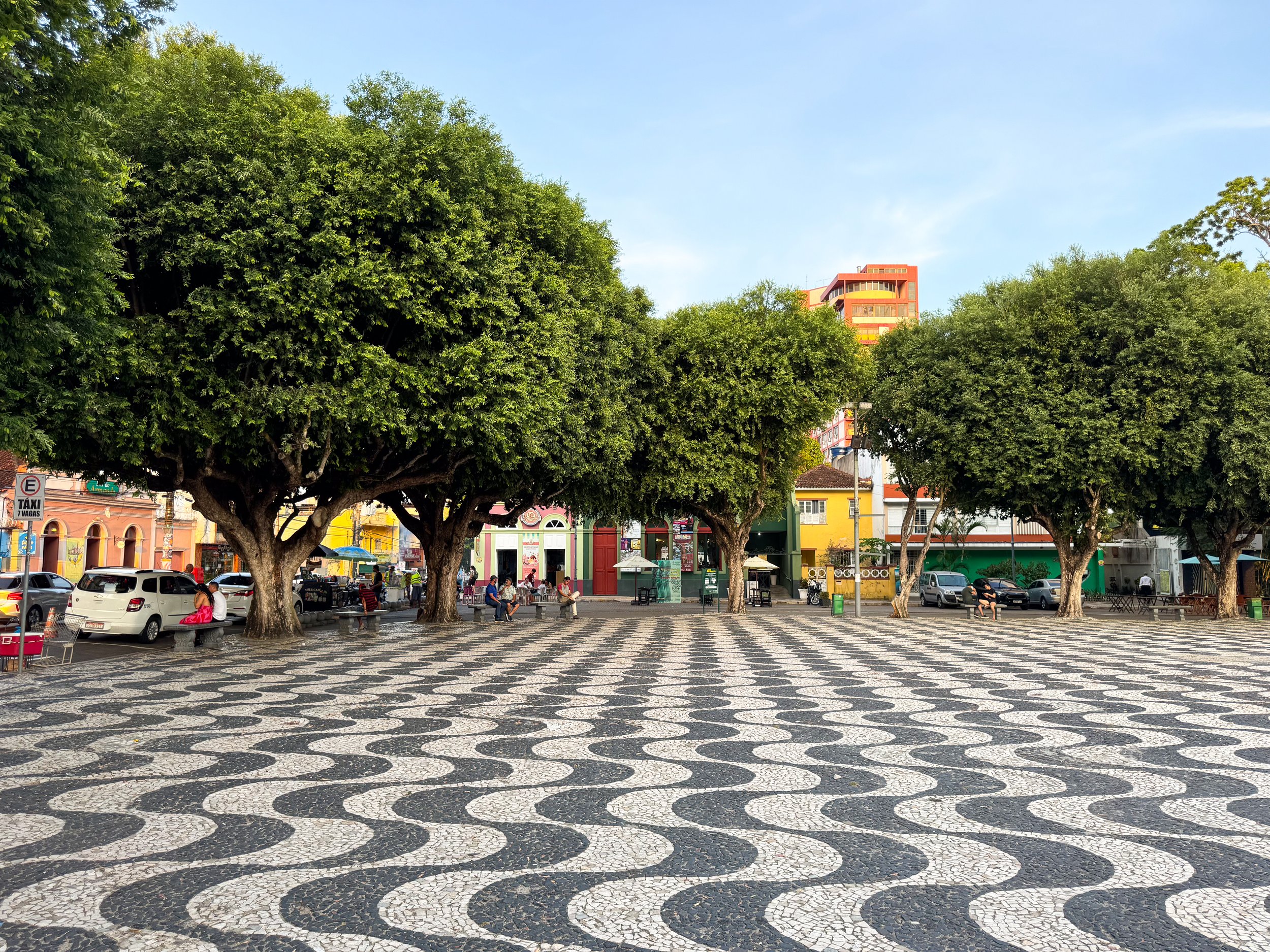
Amazon Theater. A grand and historic theater built from pink and white stones topped in with mosaic tiled dome featuring the Brazilian flag. The interior is elaborately designed with ornate details, velvet seats, warm lighting and multiple levels of opera boxes.
We visited during the Festival of the Theater of the Amazon and saw a free live performance dedicated to the women of the Amazon. The story spoke to the loss of tradition and indifference felt by many indigenous women through male control and westernization. We watched from an opera box with new friends we met in line.
Largo de Sao Sebastiao. A wavy black and white tiled plaza with a large nautical fountain at its center in front of the Amazon Theater. It’s lined with native trees home tropical birds. We saw a flock a macaws and parquets fly over, a reminder we were in the Amazon even within the city. The plaza is a hub for music and food! Surrounding restaurants serve Amazonian cuisine while vendors sell tacacá, açaí, cassava chips, popcorn and caipirinhas.
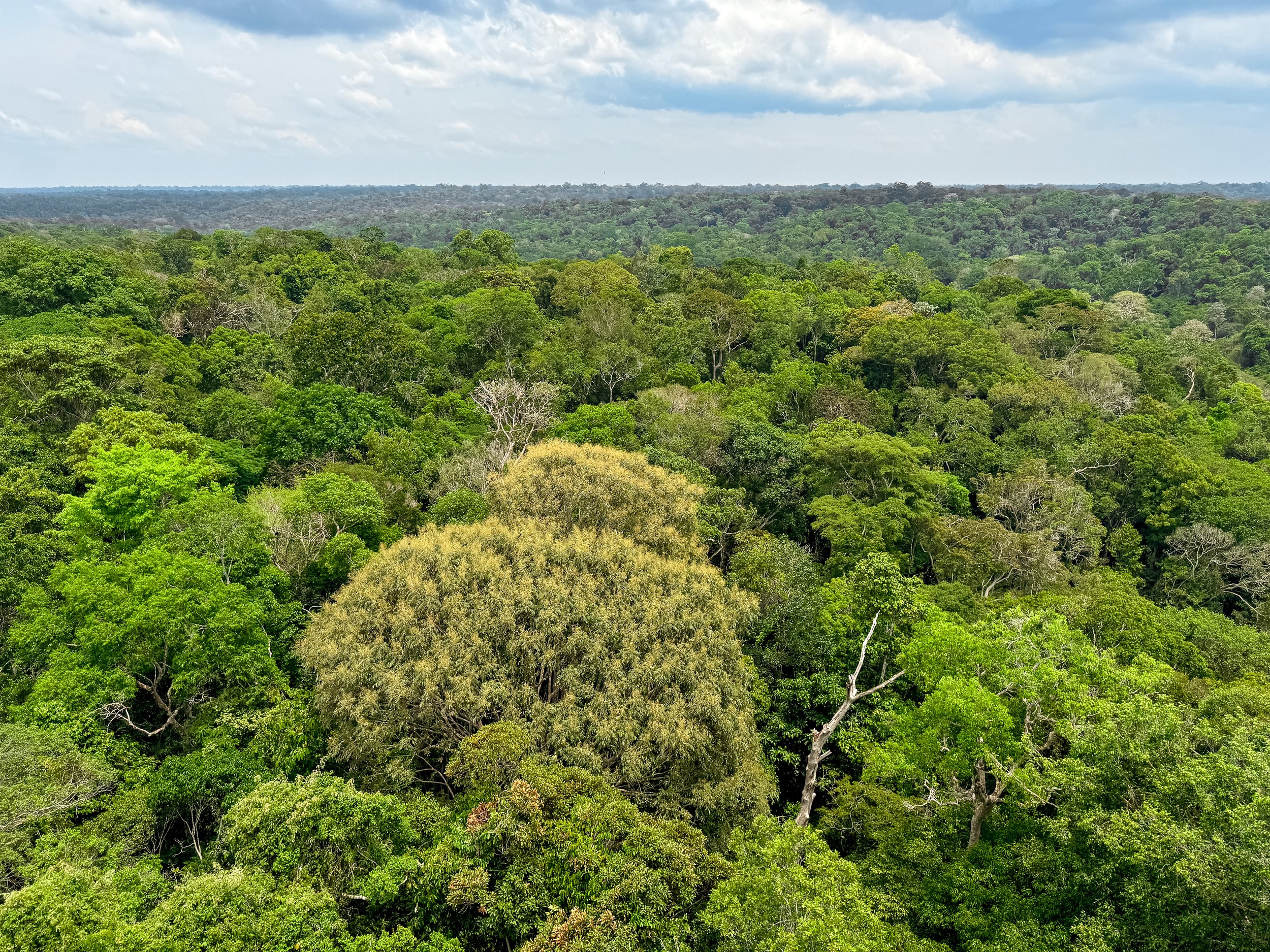
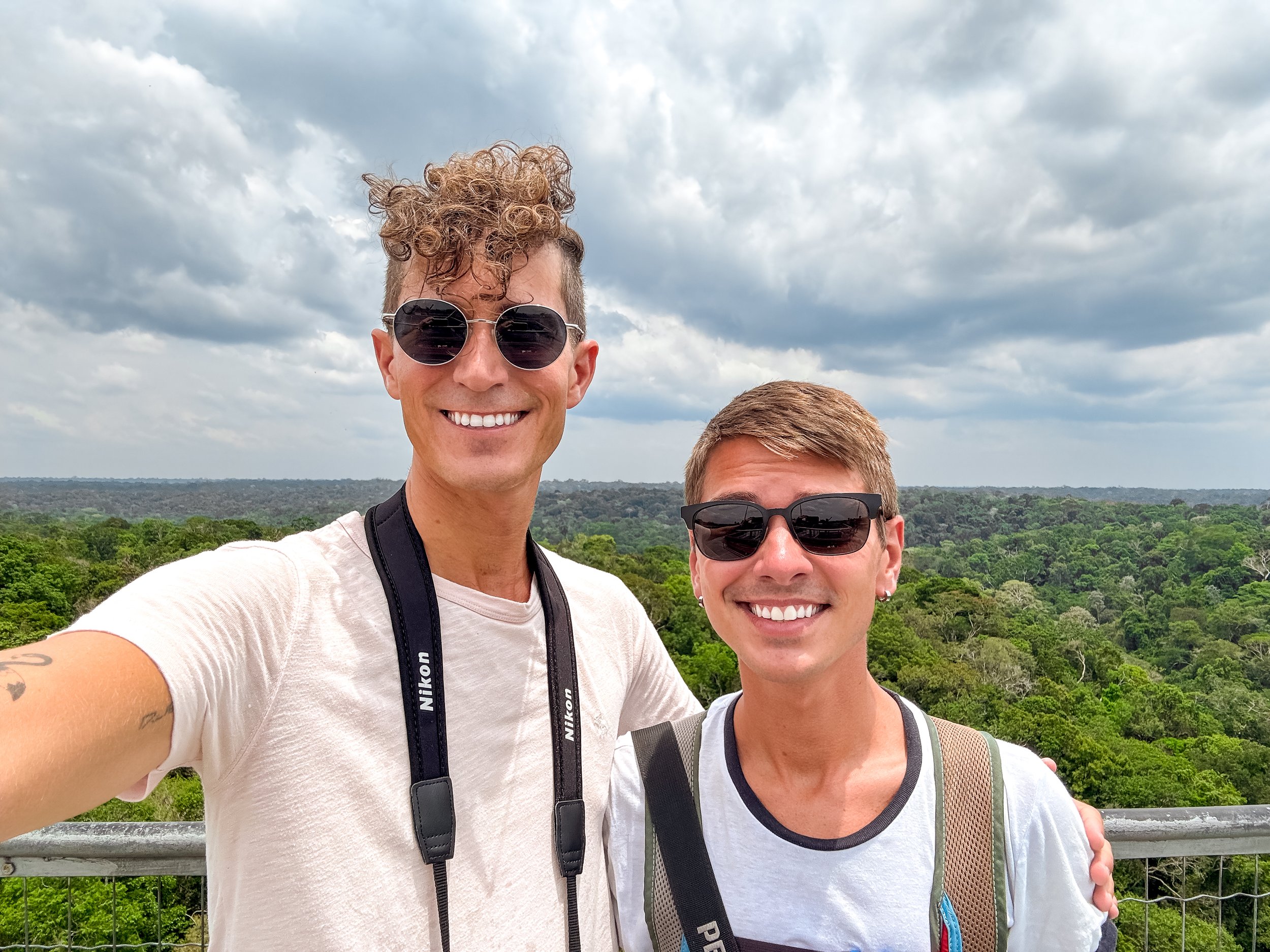
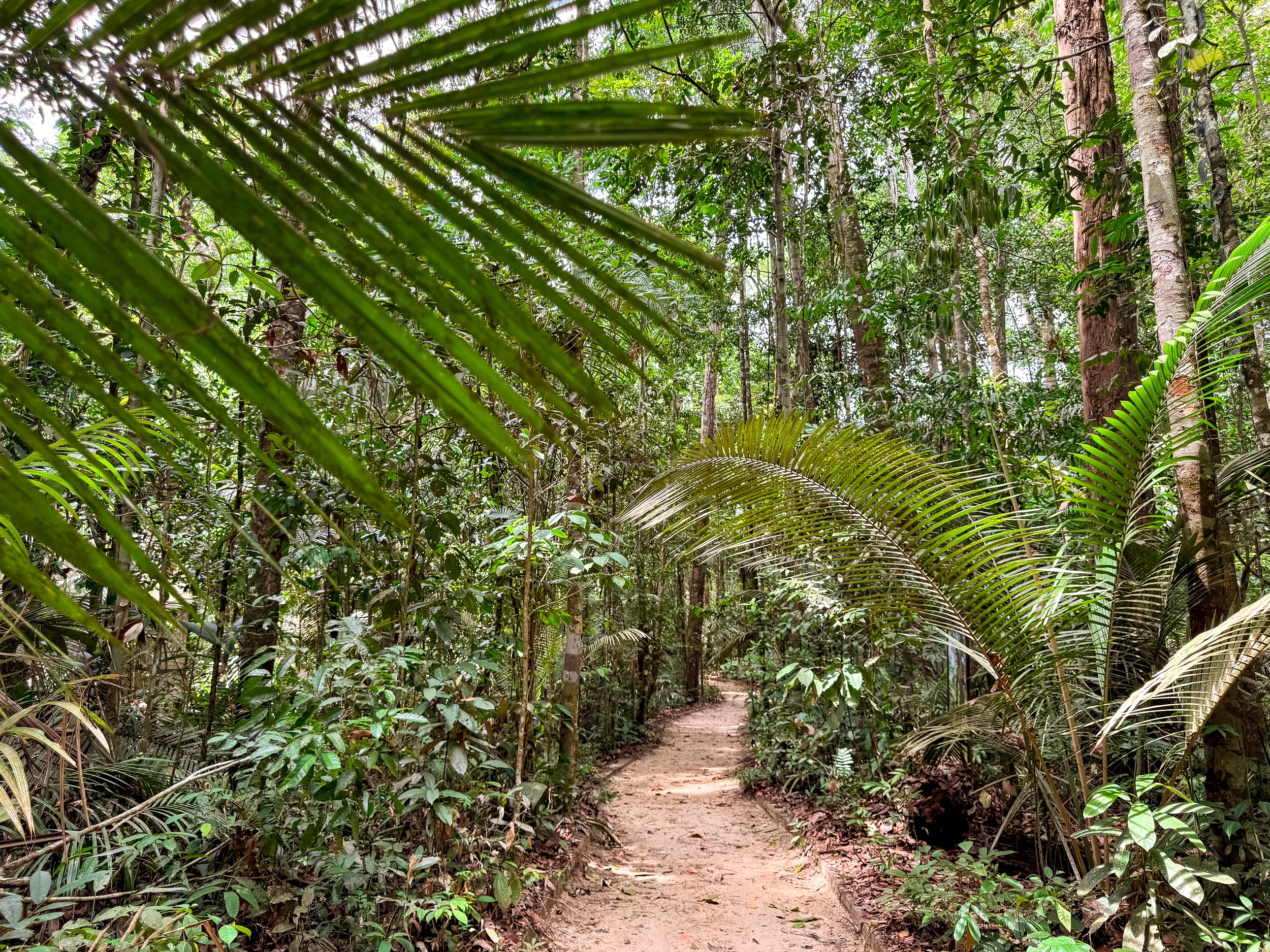
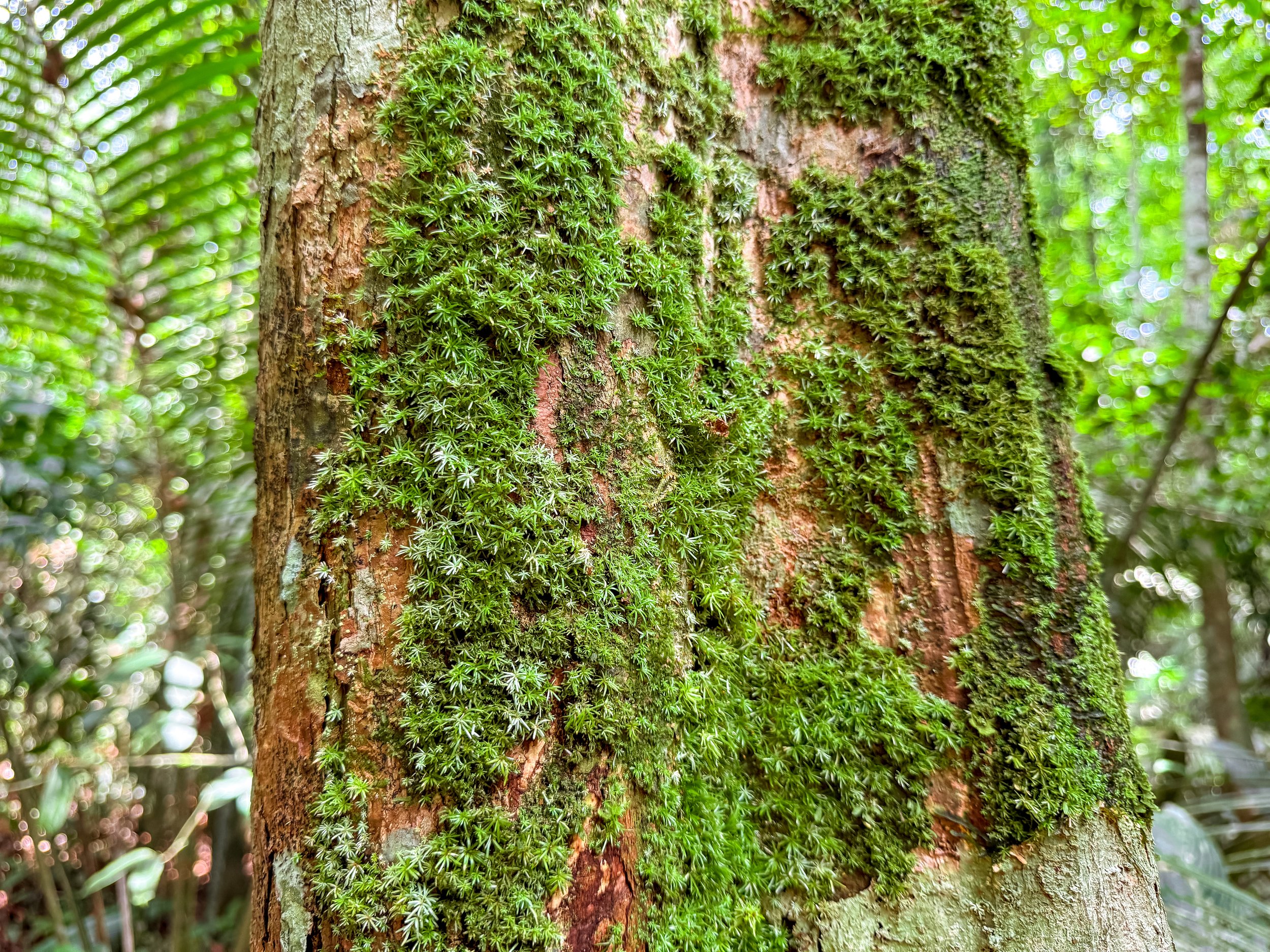
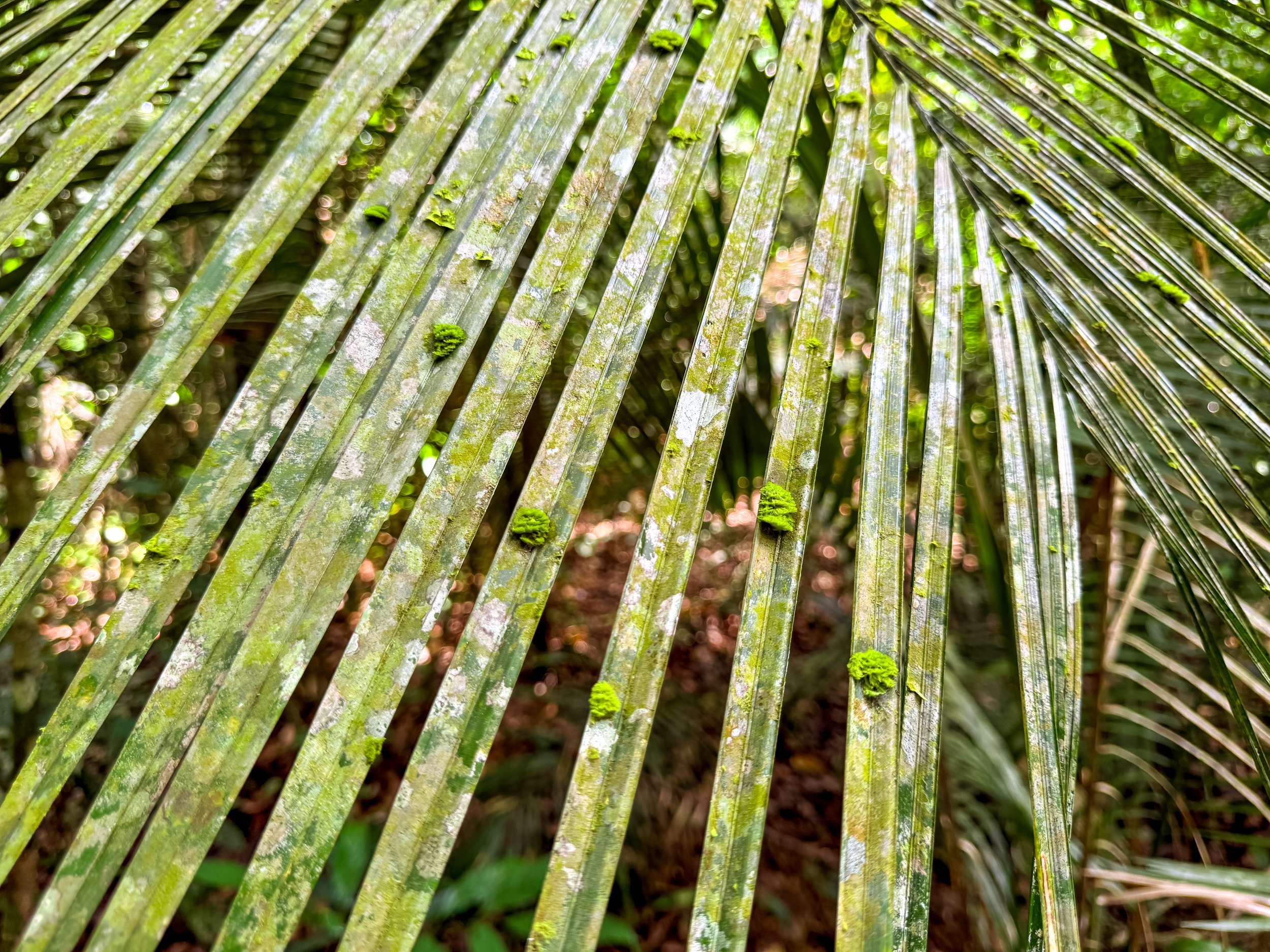
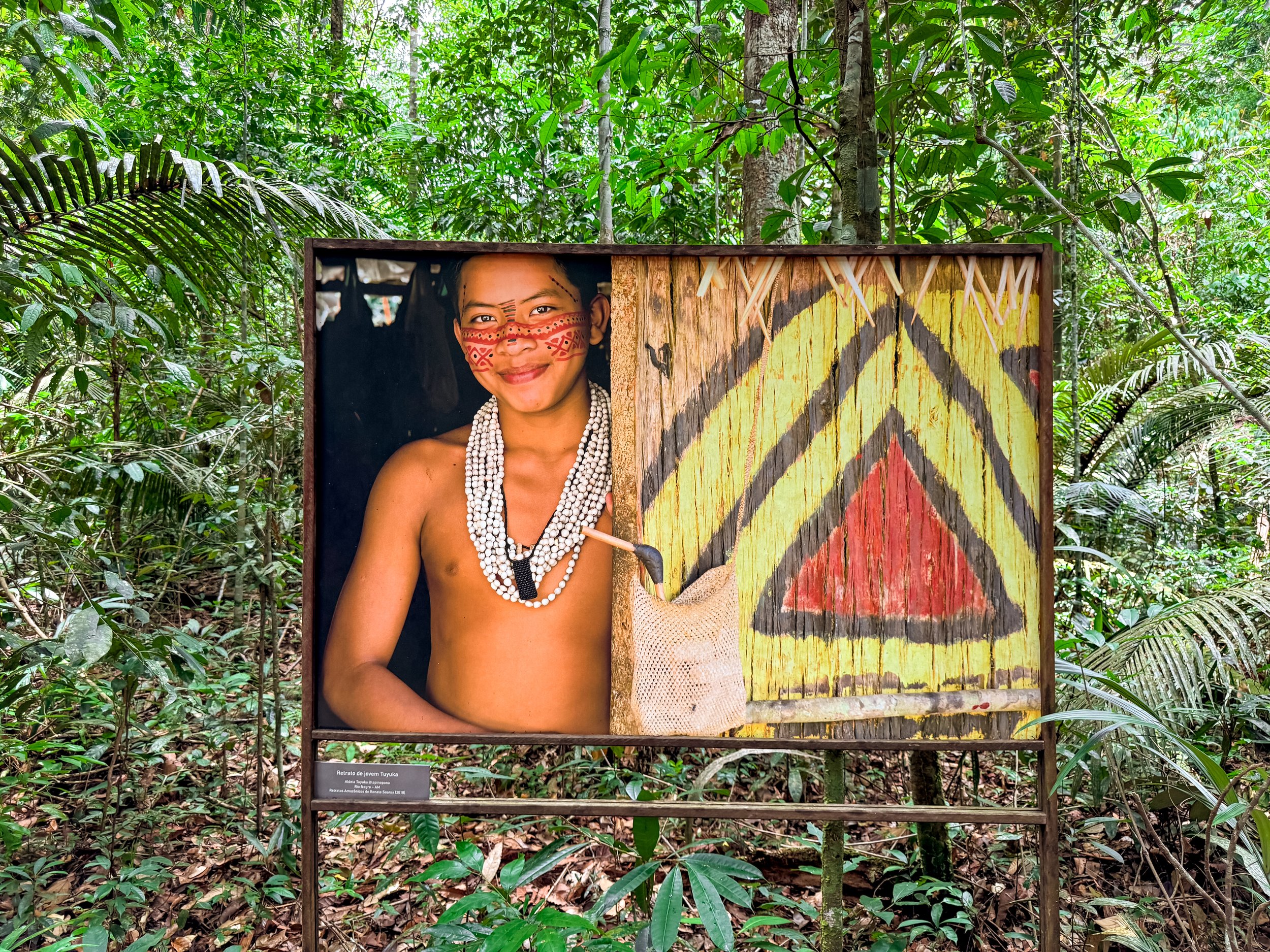
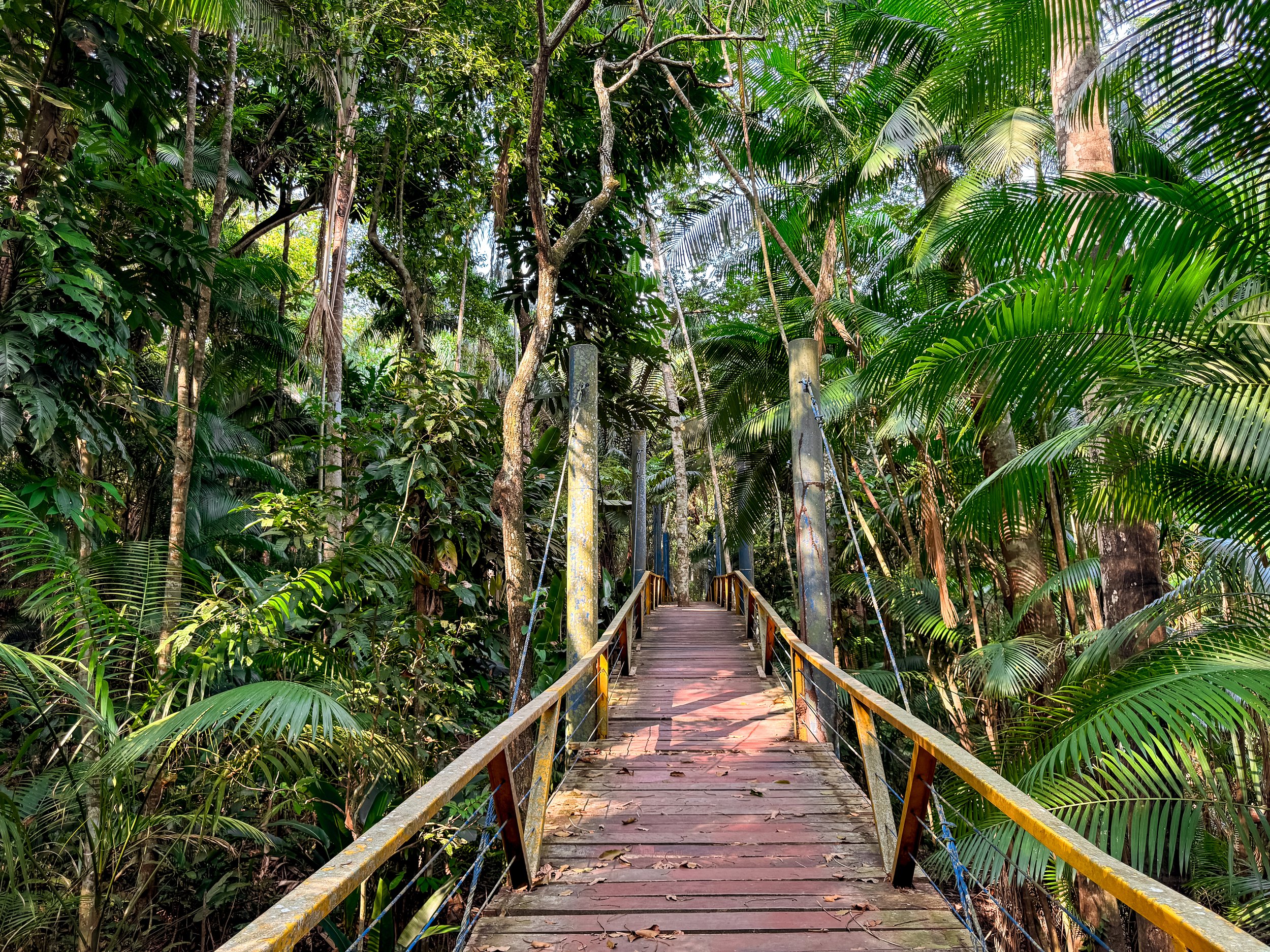


Museu da Amazonia (MUSA). A rainforest reserve at the edge of the city with nature trails through the jungle. Come here to overlook the treetop canopy and spot monkeys from the lookout tower, admire the indigenous photography lining the trails and visit exhibits and gardens with Amazonian species including palms, ferns, snakes, spiders, butterflies, cicadas and mushrooms. The park is located about 40-45min from El Centro by Uber or car. Ubers cost about $15 one way.
Parque do Mindu. A lesser maintained city park with nature trails, açaí palm trees, flocks of parquets, leaf cutter ants and many flying insects. We walked the trails while listening to the calls of birds including macaws, toucans and mocking birds. Wear plenty of insect repellant when visiting.

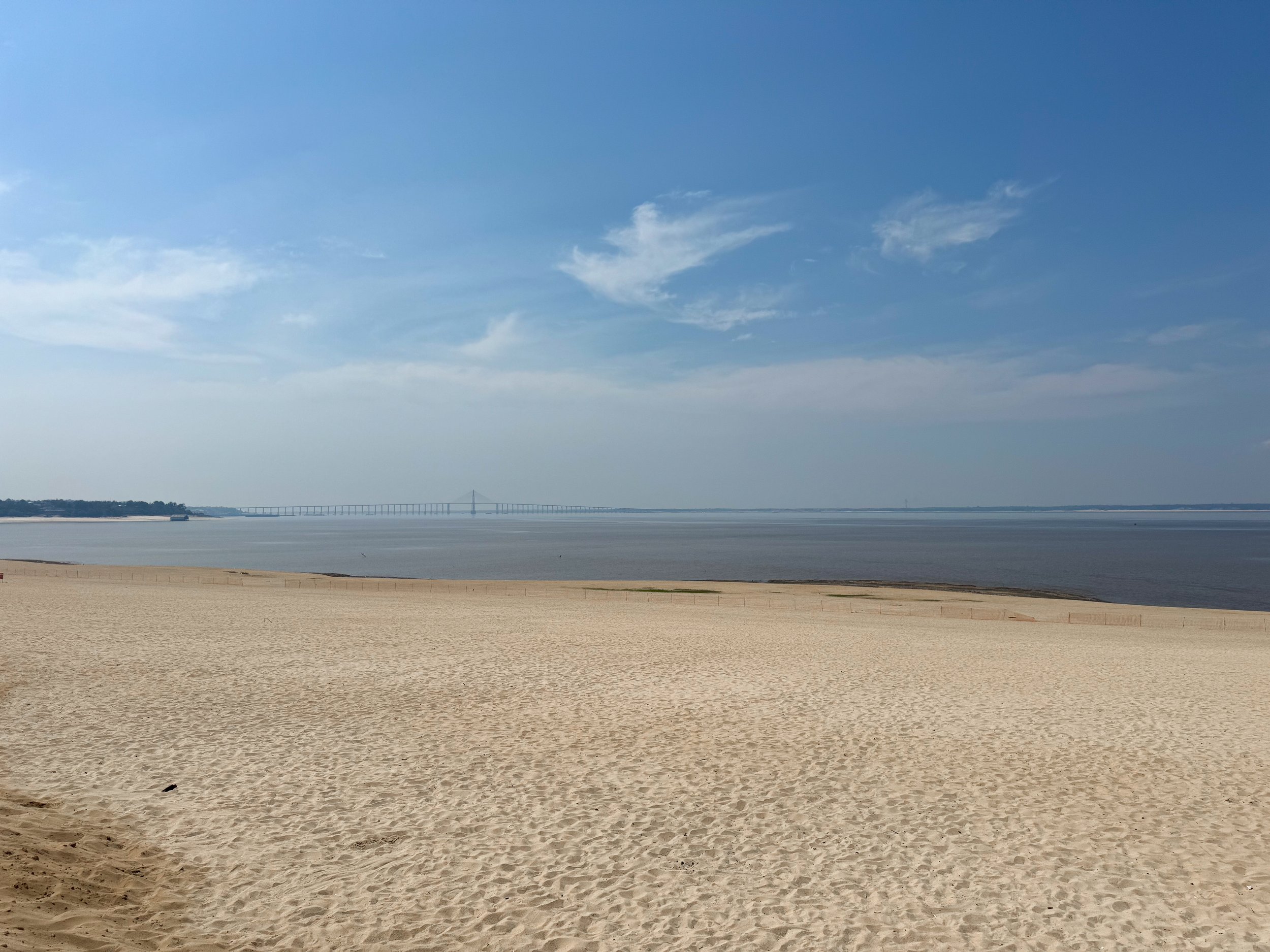
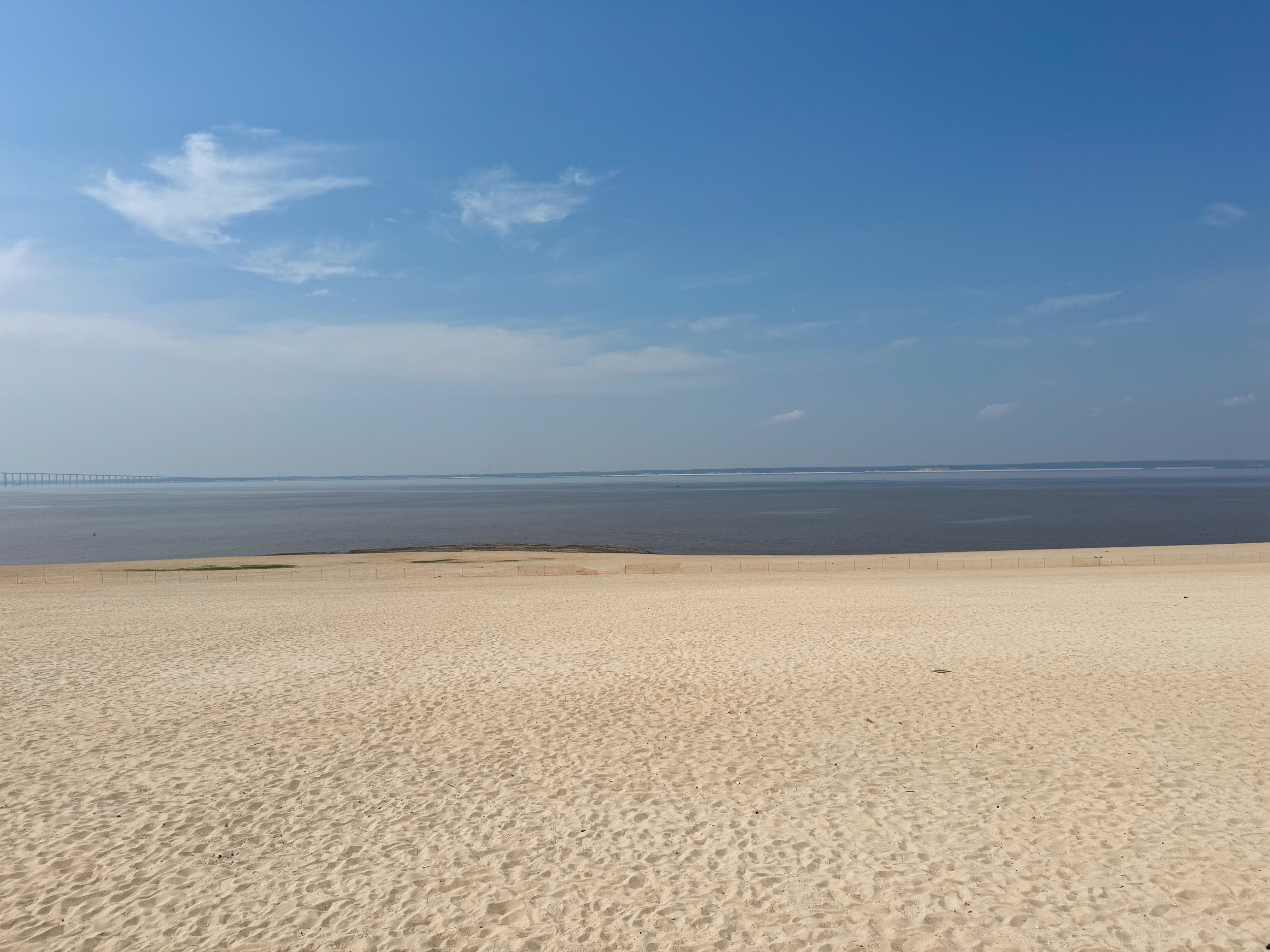
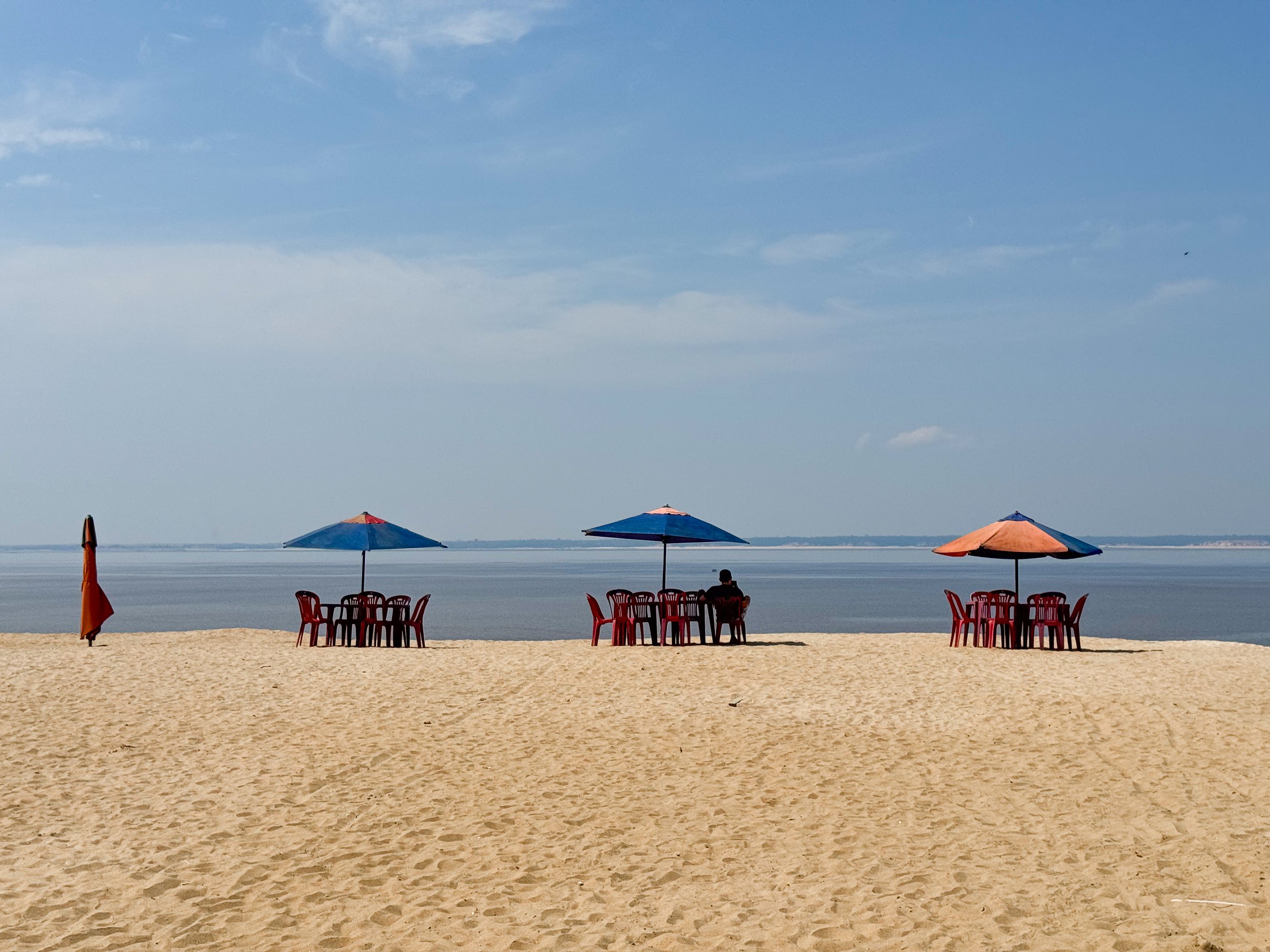
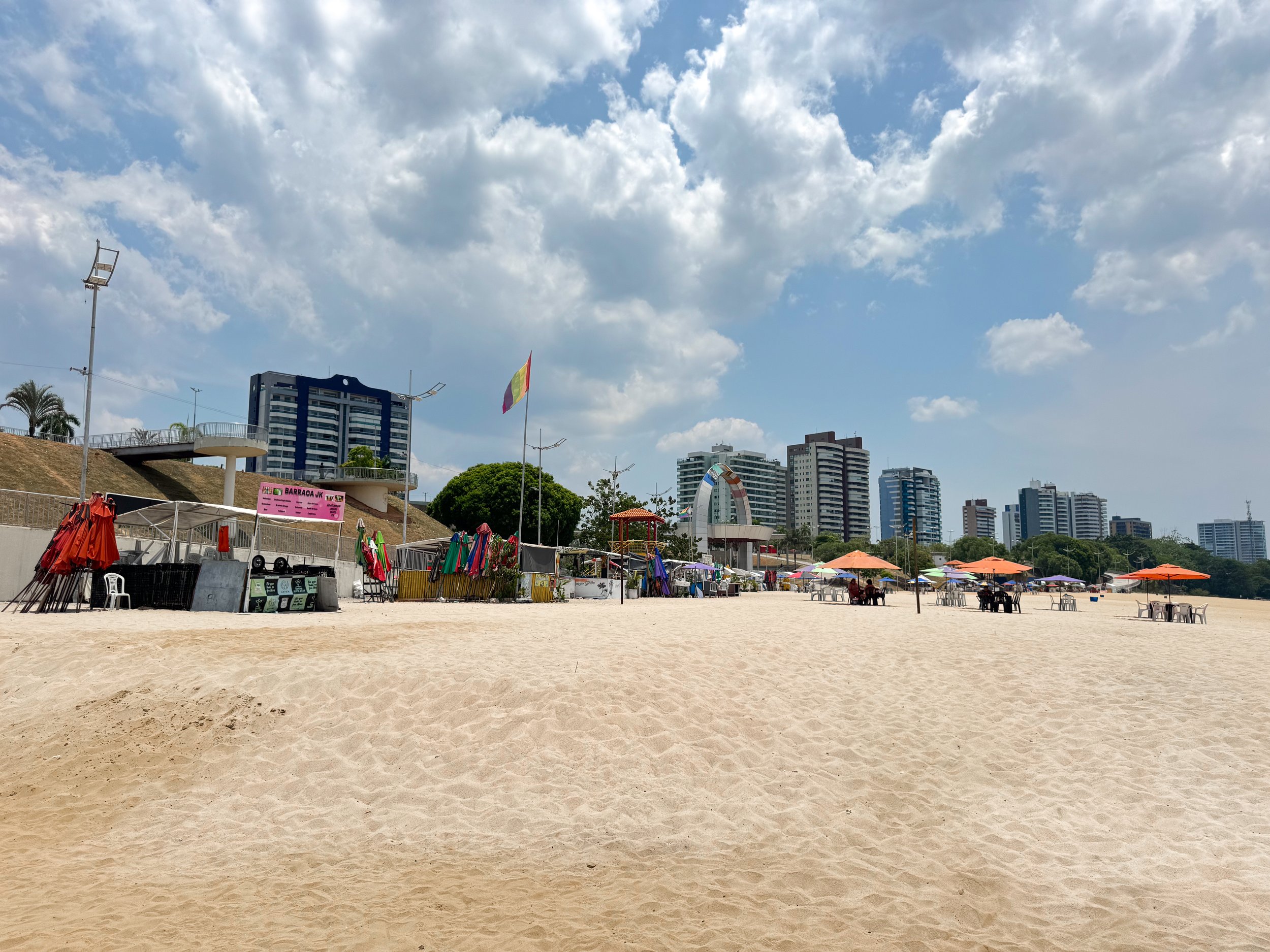
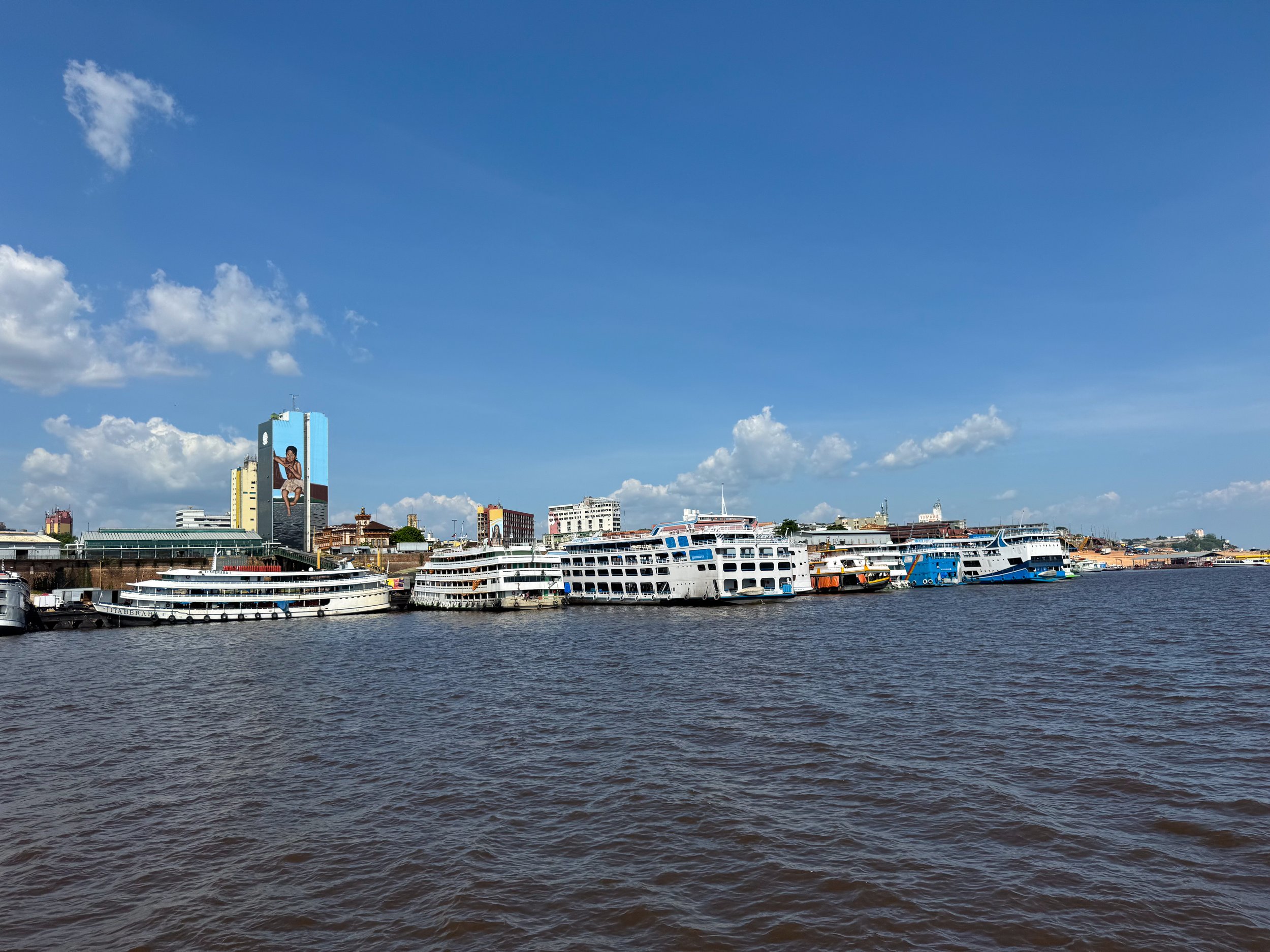

Praia de Ponta Negra Beach. A large sandy beach on the Rio Negro with a treelined promenade, volleyball courts, an amphitheater and Barracas, food vendors in beach tents. We bought fresh coconuts to hydrate and açaí sorbet to cool down. There is no shade on the beach however the Barracas also offer chair and umbrella rentals. People often come here to swim, however when we visited, swimming was banned due to the record drought. The beach is a 20 min Uber ride from El Centro.
Manaus Harbor. The harbor is the transport and shipping hub for Manaus and the Amazon region. Many tours and cruises leave from here. When we visited, the water level was so low due to the record drought that the Brazilian government had to begin dredging the harbor.
Mirante. A multi-floor complex and port for Amazon cruises with restaurants, cafes, bars, a lookout over the Rio Negro and indigenous themed artwork.
Where to Eat & Drink
One of the best ways to try Amazonian cuisine is by eating at local restaurants in Manaus, trying the street food and exploring the markets.
Tambaqui de Banda. A restaurant in Largo de São Sebastião that specializes in Amazon fish like the restaurant’s namesake, tambaqui. We ordered the fried tambaqui costela, barbecued pirarucu and shrimp vatapa with sides of farinha. The bar offers specialty cocktails and juices made from Amazonian fruits and Cachaça. Our favorite was the Todo de Amazon, made with açaí, capuaçu foam and guaraná grated using a dried pirarucu tongue. Stick around for happy hour for half off caipirinhas, discounted snacks and live music.
Biatuwi. A restaurant specializing in Amazonian dishes traditionally prepared by indigenous tribes. We ordered the tambaqui costela cooked in a cocoa leaf, toasted Saúva and Maniwara ants, and Aluá, a fermented pineapple drink similar to kombucha. All dishes and drinks came out in calabash bowls resting on a ring of dried açaí seeds.
Coreto dos Manaós. A restaurant at the Mercado Municipal Adolpho Lisboa with a lush shaded garden. We came here for breakfast to try Tapioquena. We ordered two, one stuffed with tacumã and banana, the other with egg and cheese.
Tacacá da Gisela. A popular soup stand specializing in Tacacá located in Largo de São Sebastião.
Açaí do Largo. An açaí stand specializing in “Creme de Cupuaçu with Açaí” located in Largo de São Sebastião.
Sorveteria Glacial - Self Service (Loja 1). A self service ice cream shop that sells by weight. Come here for exotic flavors only found in the Amazon including fruits and nuts like, Açaí, Castanha do Brazil (Brazil nut), Maracujá (passion fruit), Cupuaçu, Tapereba and Doce de Leite.
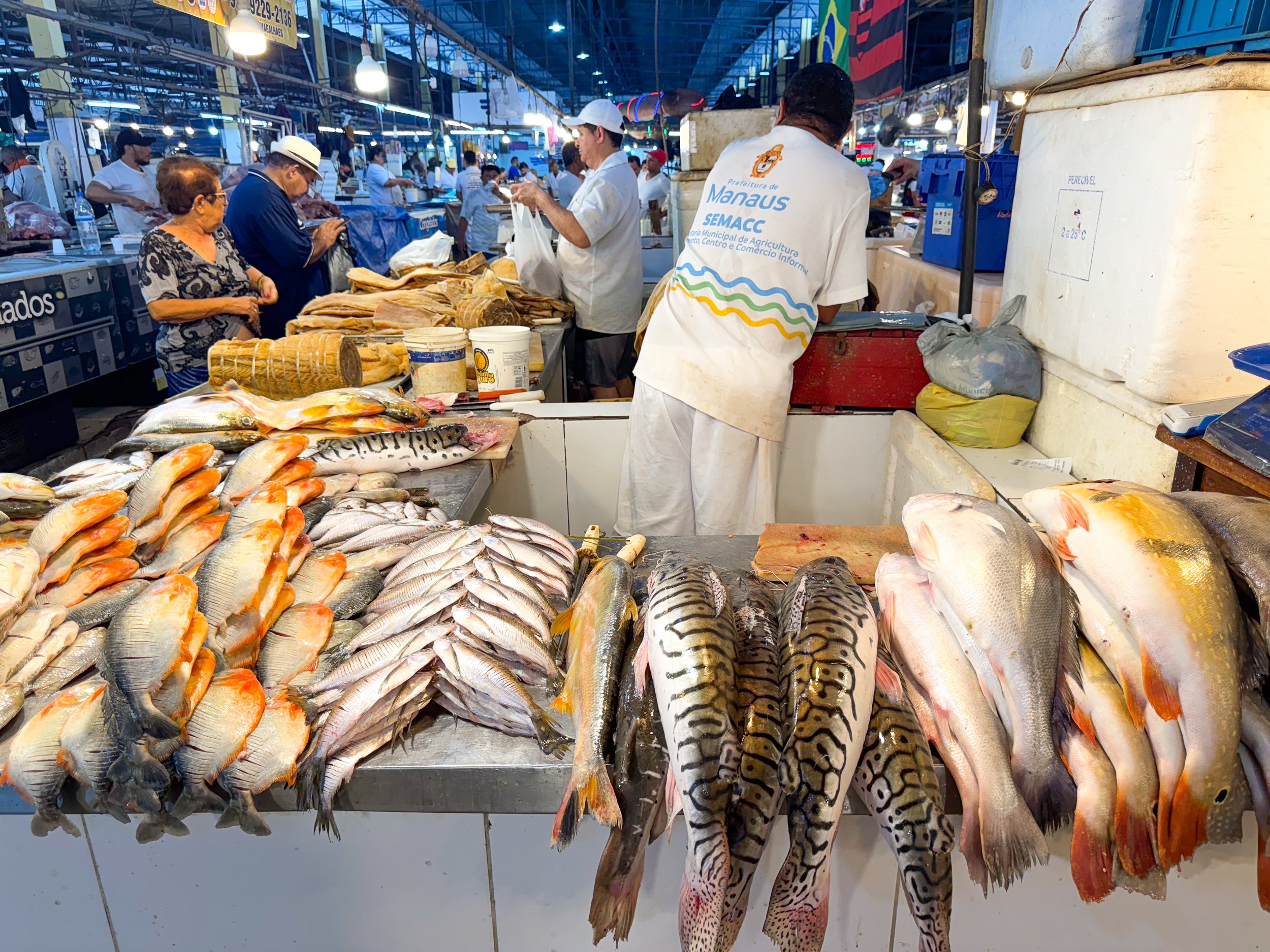
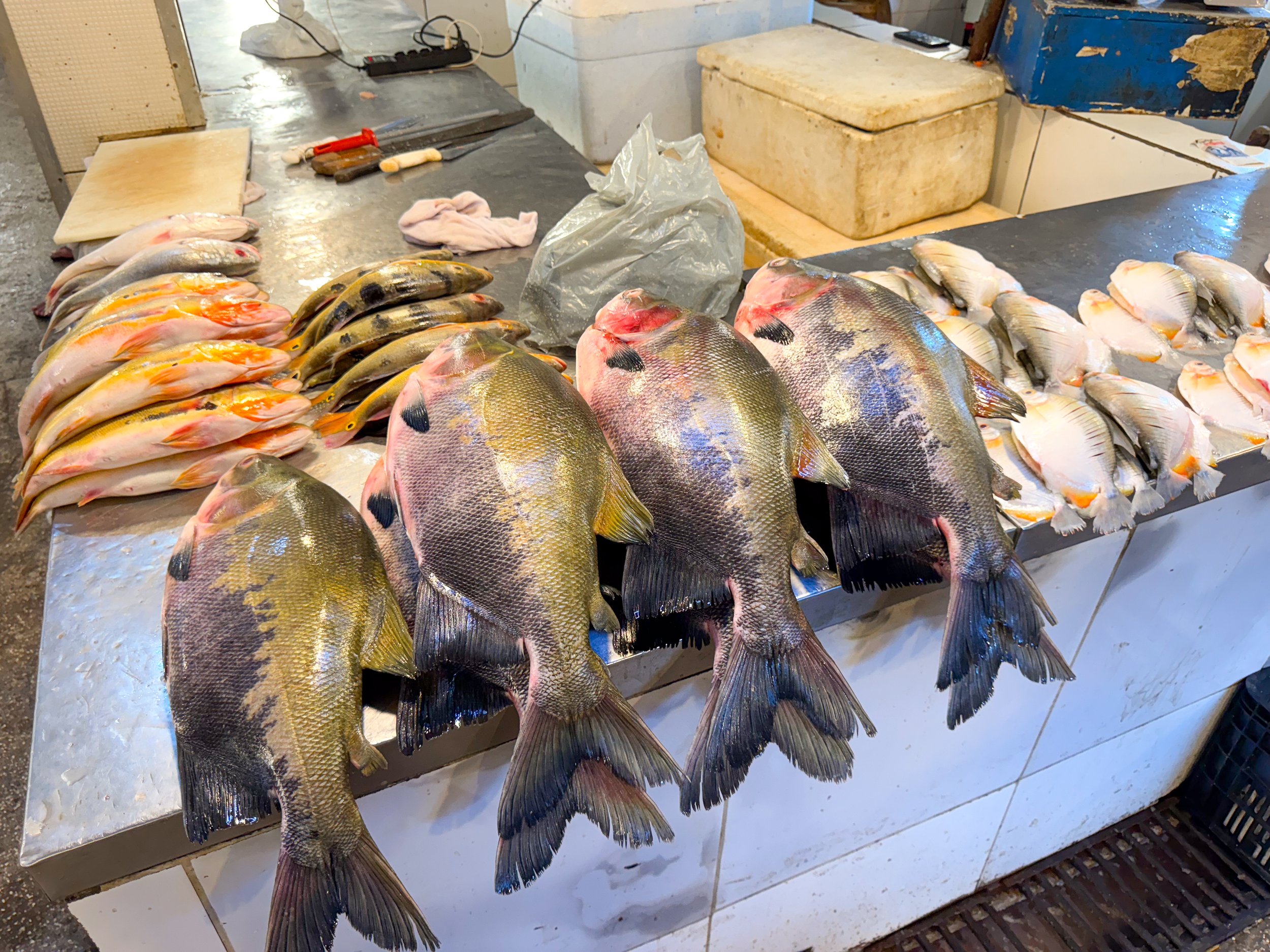
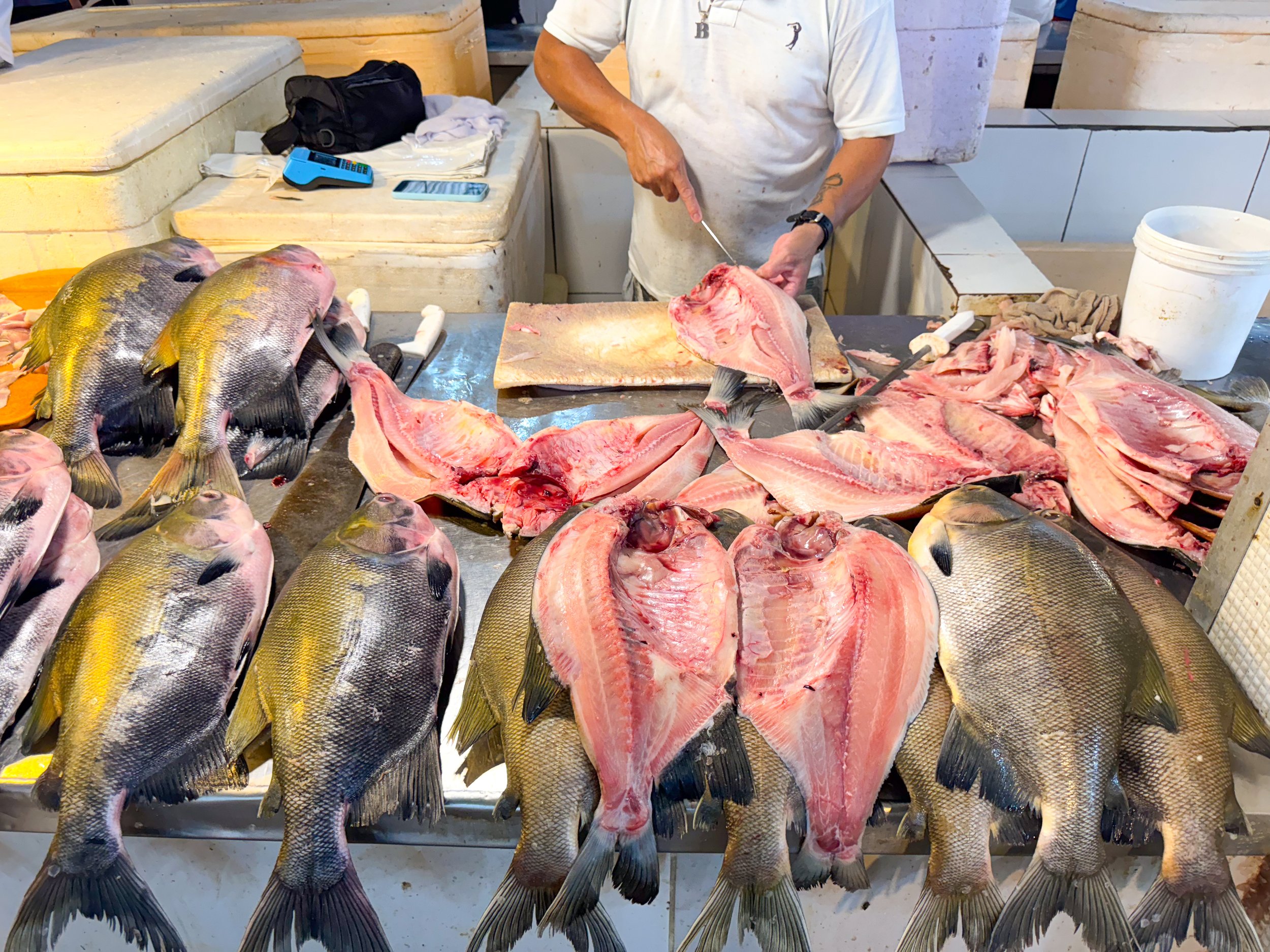
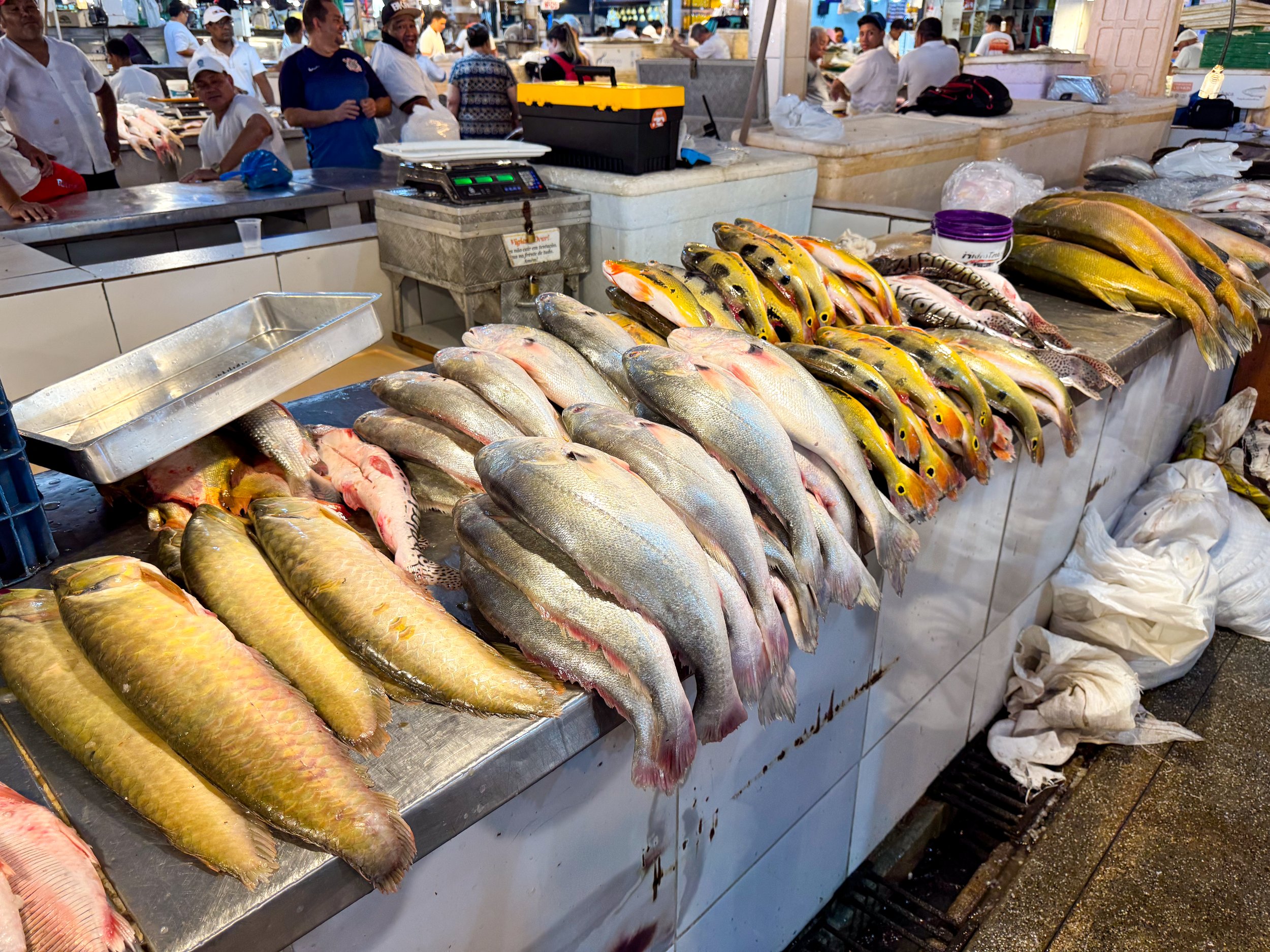
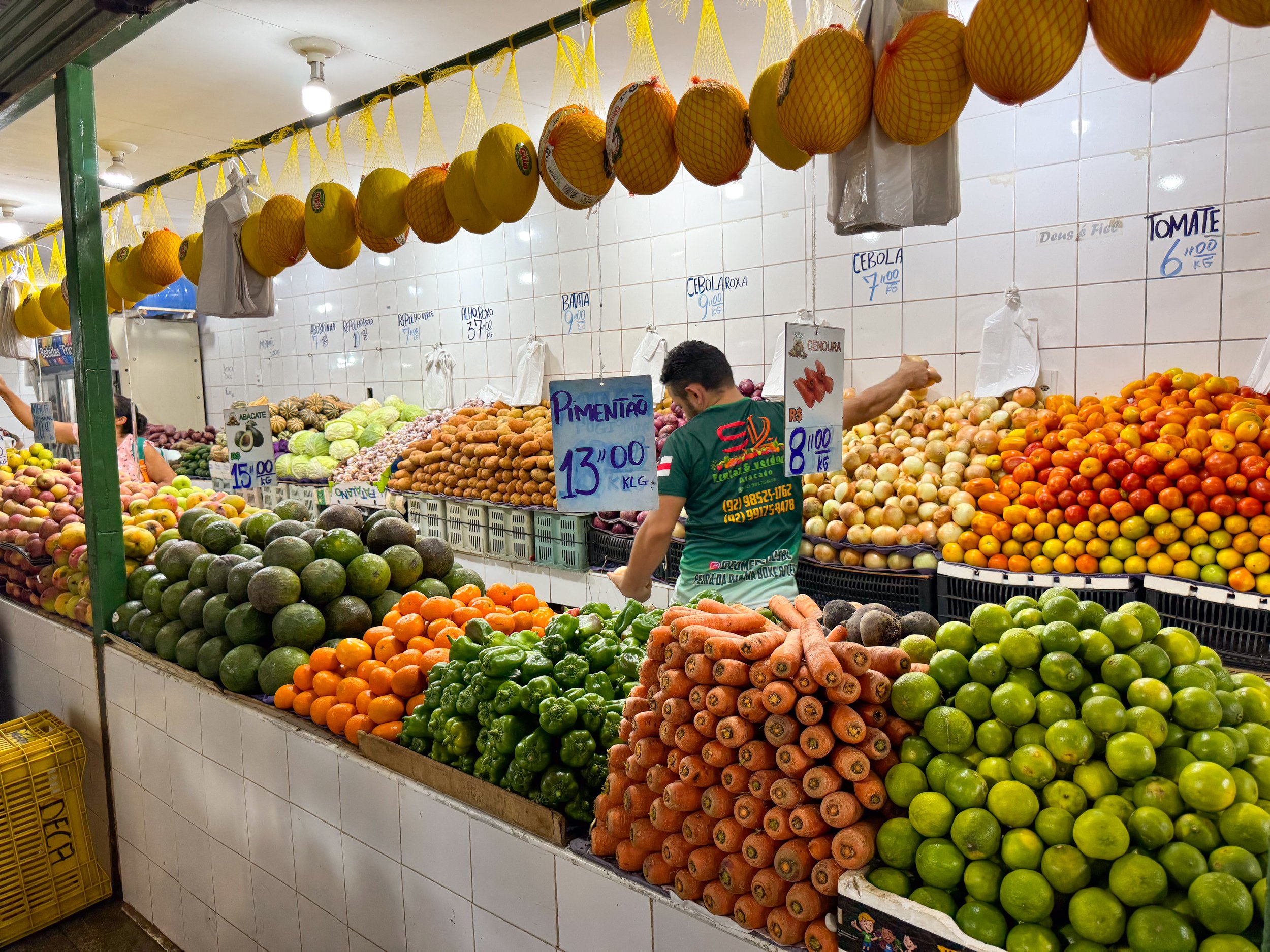
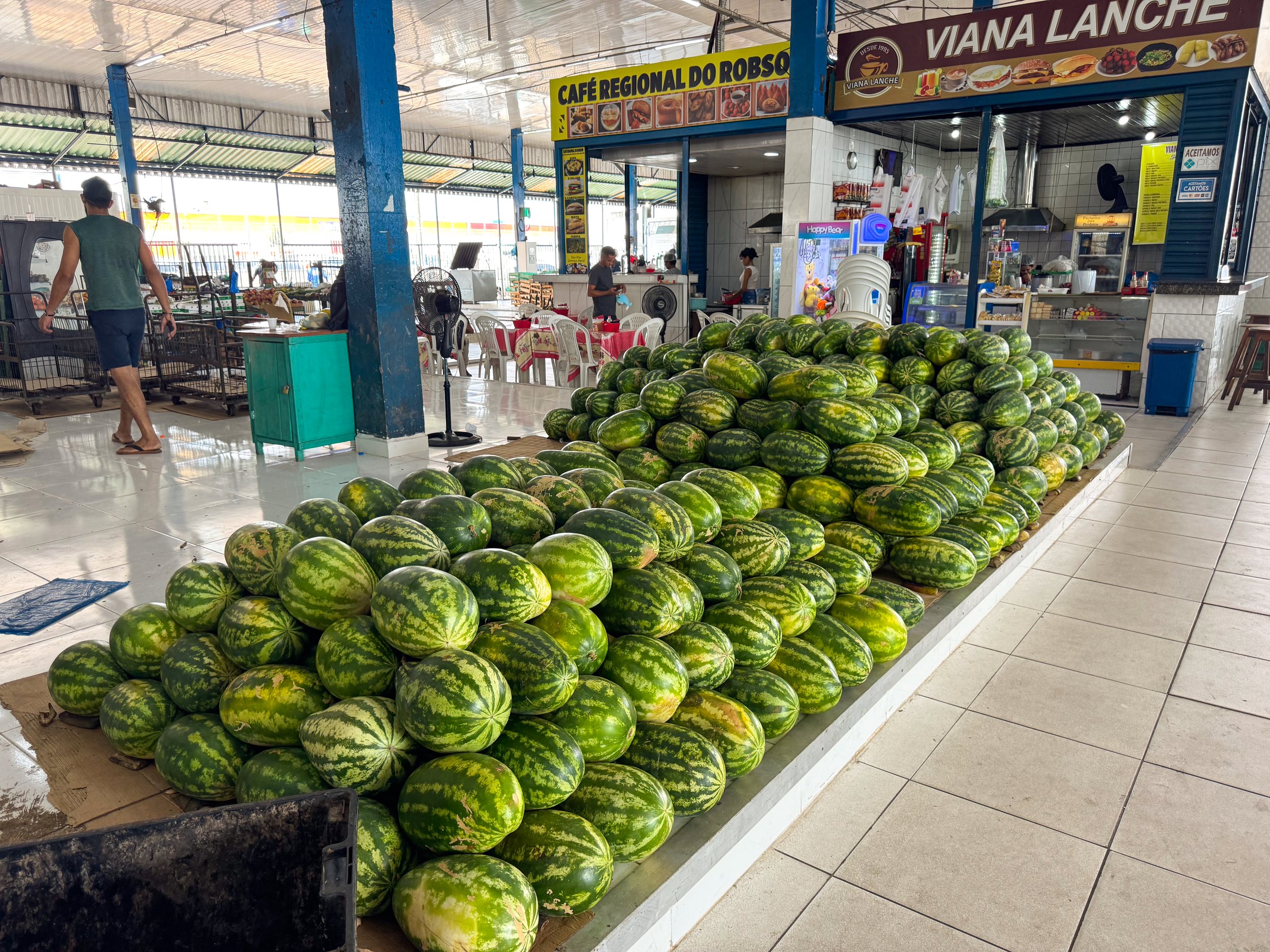
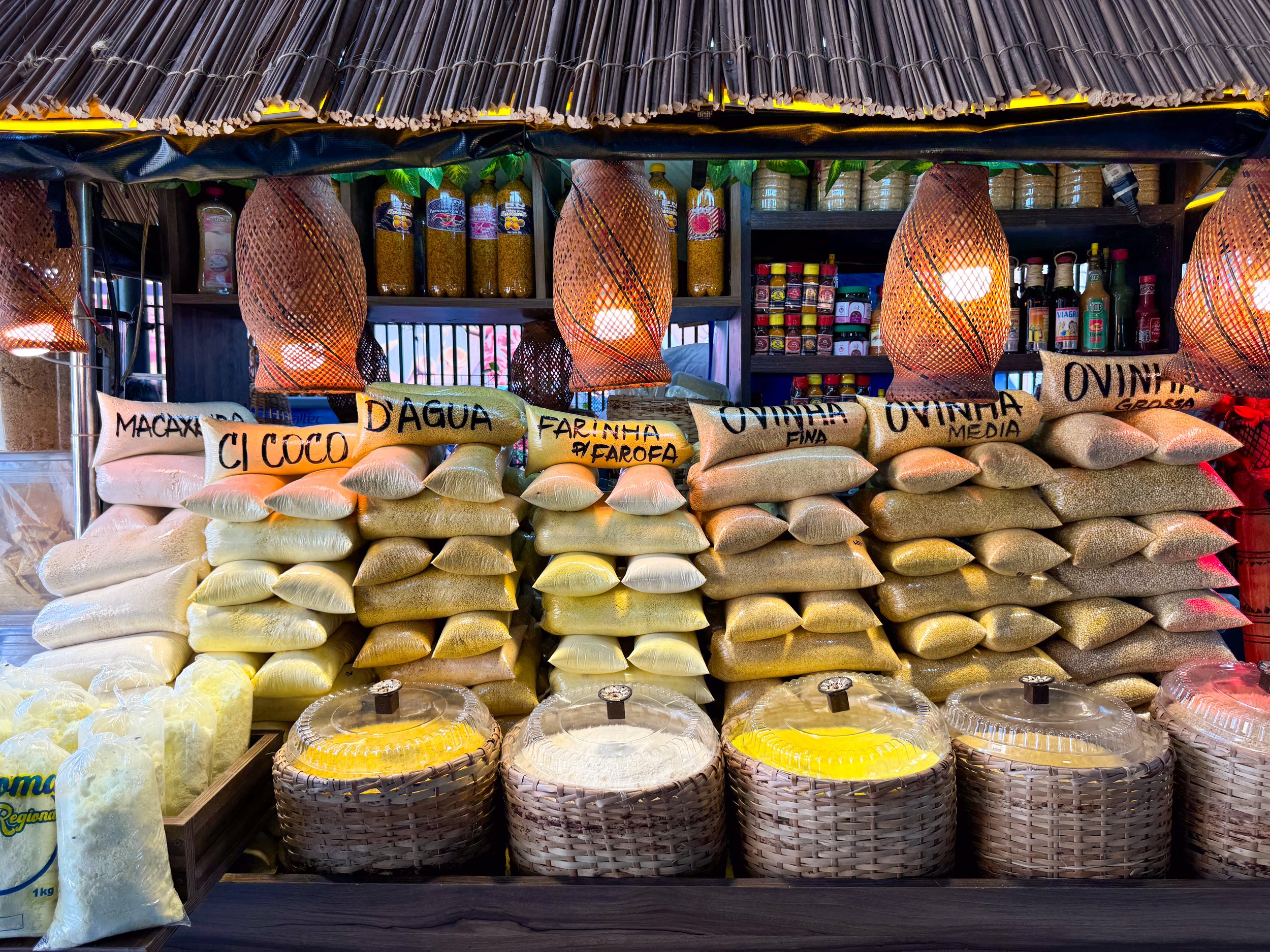
Markets
Manaus is well known across the Amazon region for its food markets, especially when it comes to Amazonian fish.
Feira Manaus Moderna. A massive and bustling food market with aisles of hundreds of vendors selling fish, meats, produce, fruit, cheese and grains. Freshly caught Amazonian fish are delivered directly from the outside pier to fish mongers sharpening knives and preparing them for consumption. Tables are covered in all manner of fish including Tambaqui, Pirarucu, Red Bellied Piranha, Peacock Bass and Spotted Catfish. Elsewhere outside the market, merchants sell fishing supplies including nets, hooks and coolers.
Feira Moderna da Banana de Manaus. A large fruit market under a shed with vendors selling bunches of plantains, crates of bananas, fresh juices, sacs of oranges, crates of mangos, piles of water melons and tables covered in papayas, pineapples and limes.
Mercado Municipal Adolpho Lisboa. A historic wrought iron market with restaurants and cafes, Amazonian crafts, meat and fish vendors and medicinal goods including oils, herbs & natural supplements.
Getting Around
By Uber. We took Ubers to get around the city. They are extremely affordable, costing $2 - $5 to get around the city and $10 to/from the airport to the city center.
On Foot. The El Centro neighborhood of the city is walkable.
Good to Know
Safety. It’s smart to be aware of your surroundings. The city has pockets of doggy areas, even around the El Centro neighborhood.
Language. Portuguese is the national language of Brazil. Very few people speak English. We got by on some basic Portuguese phrases and words combined with some Spanish and Google Translate.
LGBTQ+ We felt safe and welcomed as a gay couple in Manaus, especially in the El Centro neighborhood. We saw many queer people from across the spectrum, progress flags and even befriended another gay visiting from São Paulo.
Temperature. We visited during the dry season. Temperatures reached a peak of 102 Fahrenheit! We avoided the heat when possible and drank between 2-3 liters of water per day to stay hydrated.
Drinking Water. It’s not recommended to drink the tap water in Manaus. It should be filtered or boiled before consumption.
Wear Sunblock. During the dry season, the UV was often very high. Sunblock and umbrellas were necessary to prevent sunburns.
Insects. It’s the Amazon; there are insects and mosquitos anywhere near water and in the forest. Insect repellant and mosquito nets are necessary to reduce bites.
Vaccinations. We took malaria pills daily while visiting the Amazon as well as received the Yellow Fever vaccine prior to traveling.
Climate Change
The Amazon is directly affected by climate change through pollution, deforestation and drought. This was evident during our time in Manaus as we toured the region, spoke with locals and read recent news headlines.
Pollution Problem. Manaus has an unfortunate pollution problem. There is trash blowing around the central plaza, piling up in the streets and large amounts of waste building up in the waterways, piers and beaches. When we left for our river cruise, the Manaus Harbor looked like a landfill. Fortunately, days later when we retuned, city workers had began cleaning enough waste to fill an entire barge.
Deforestation. The signs of climate change and habitat loss were visible as we flew over the Amazon. From the air, vast regions of Amazon had been deforested, burnt down or converted to farmland. Even during our river tour, there were ash clouds rising in the distance from forest being burned for agriculture.
Record Drought. We visited during the Amazon’s worst drought on record, going back 144 years. The mighty Amazon River and its largest tributary, the Rio Negro had reached record lows. Large sand banks and islands formed in both rivers while floating houses and boats sat on the bottom of dried river beds and smaller tributaries. Even our river boat ran aground in the shallows while the city’s main beach was closed for swimming.
For Next Time…
The Rainy Season. Having visited during the during the dry season and worst recorded drought, we would love to return to the Amazon during the rainy season to see the difference in water levels and climate.
The Western Amazon. The Amazon stretches across several countries in South America. Having visiting the Brazilian and Surinamese Amazon, we have our eyes of seeing areas to the west in Bolivia, Peru, Colombia and Ecuador.
Suriname
Suriname is a country in the north east of South America with a Dutch colonial past, vast rainforest and melting pot of cultural influences. We spent over a week exploring is capital city, Paramaribo as well as the Amazon region deep within the interior of the country.
Suriname
Suriname is a country in the north east of South America with a Dutch colonial past, vast rainforest and melting pot of cultural influences. We spent over a week exploring is capital city, Paramaribo as well as the Amazon region deep within the interior of the country.
Paramaribo
Paramaribo is the Dutch Colonial capital of Suriname, also called “the wooden city” for its dutch style wooden houses and buildings. It’s home to markets, former plantations and museums. It’s the perfect starting point to venture to the interior of the country or along the coast to nature reserves and the neighboring counties.
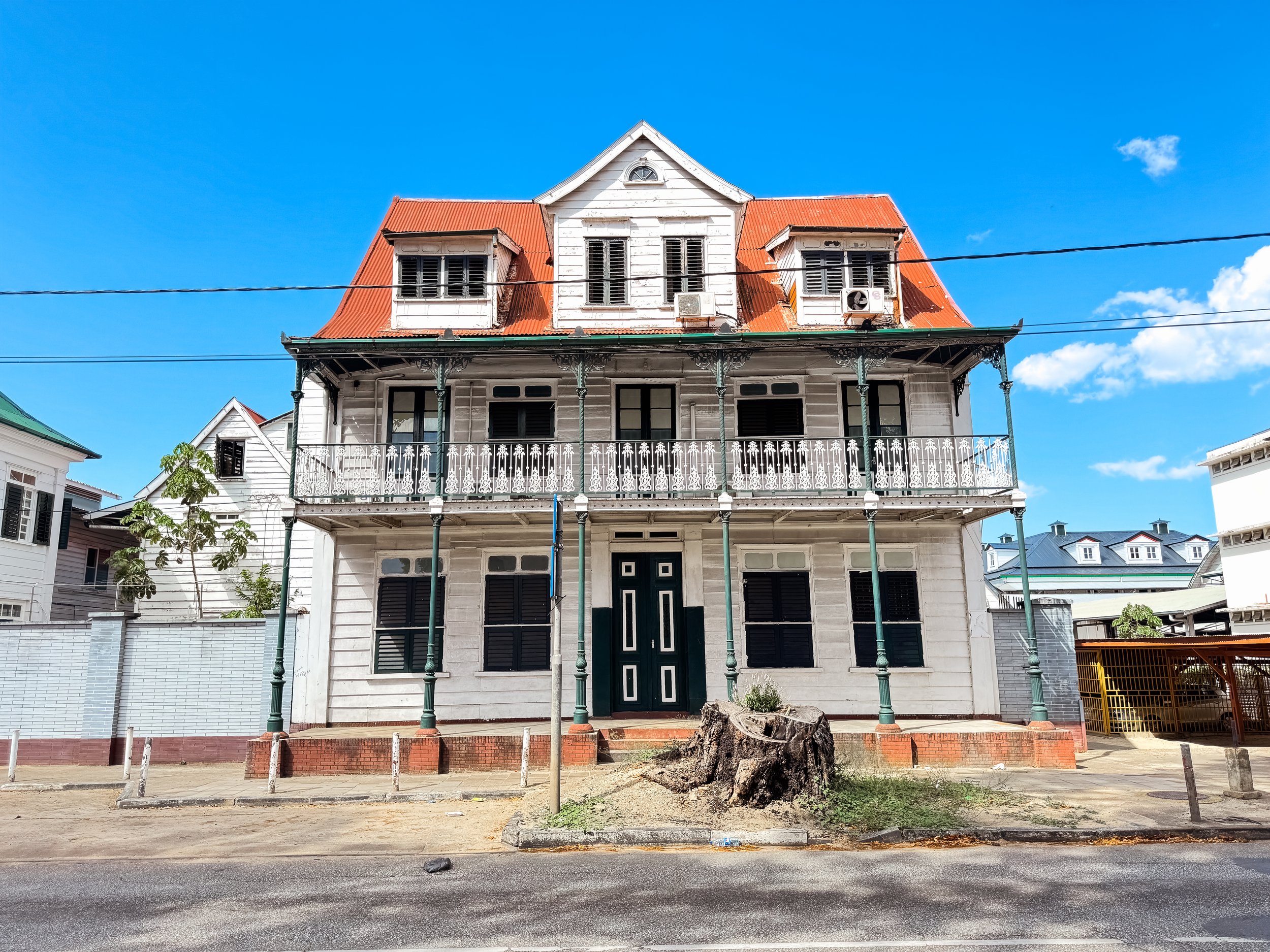
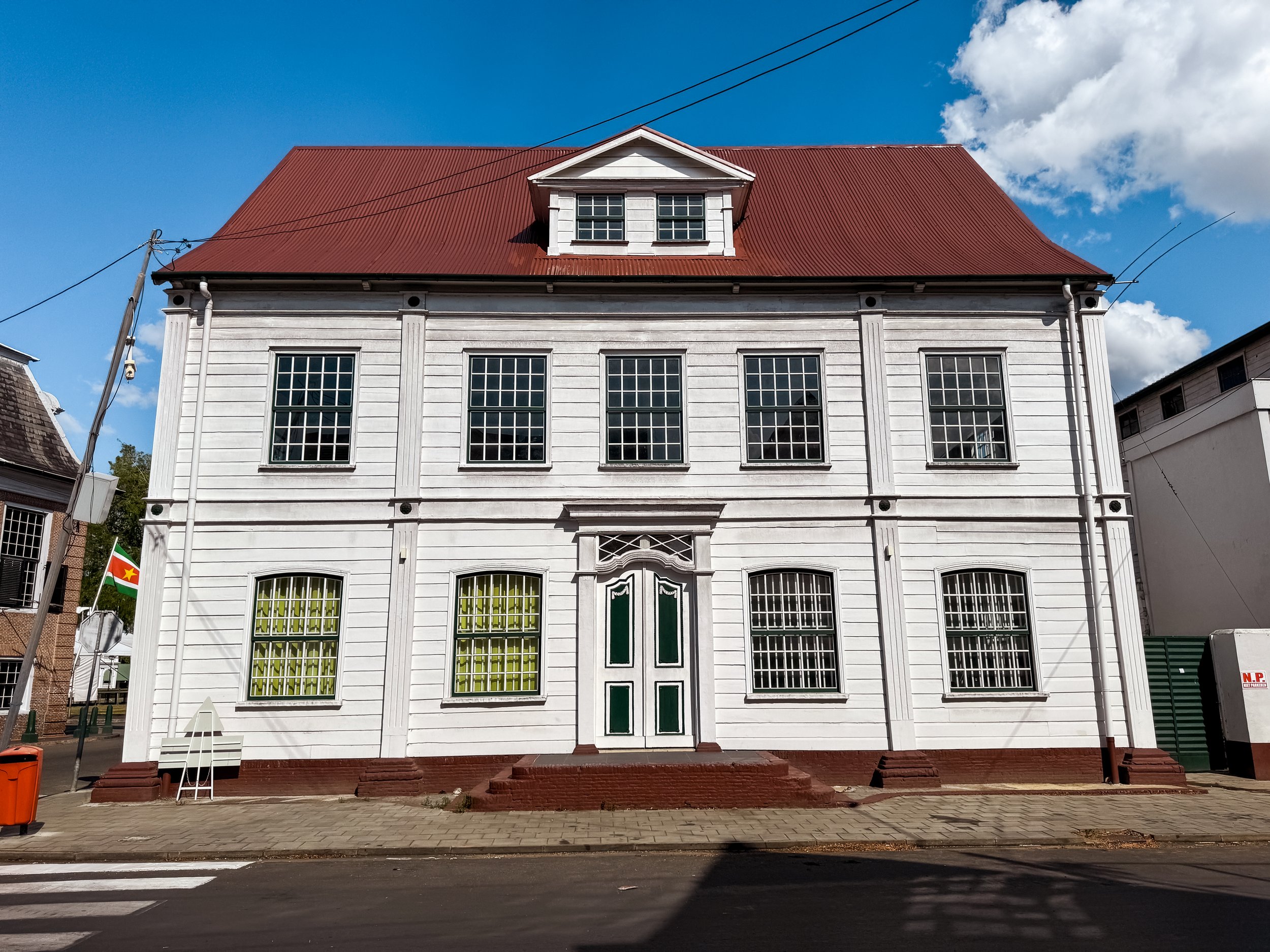
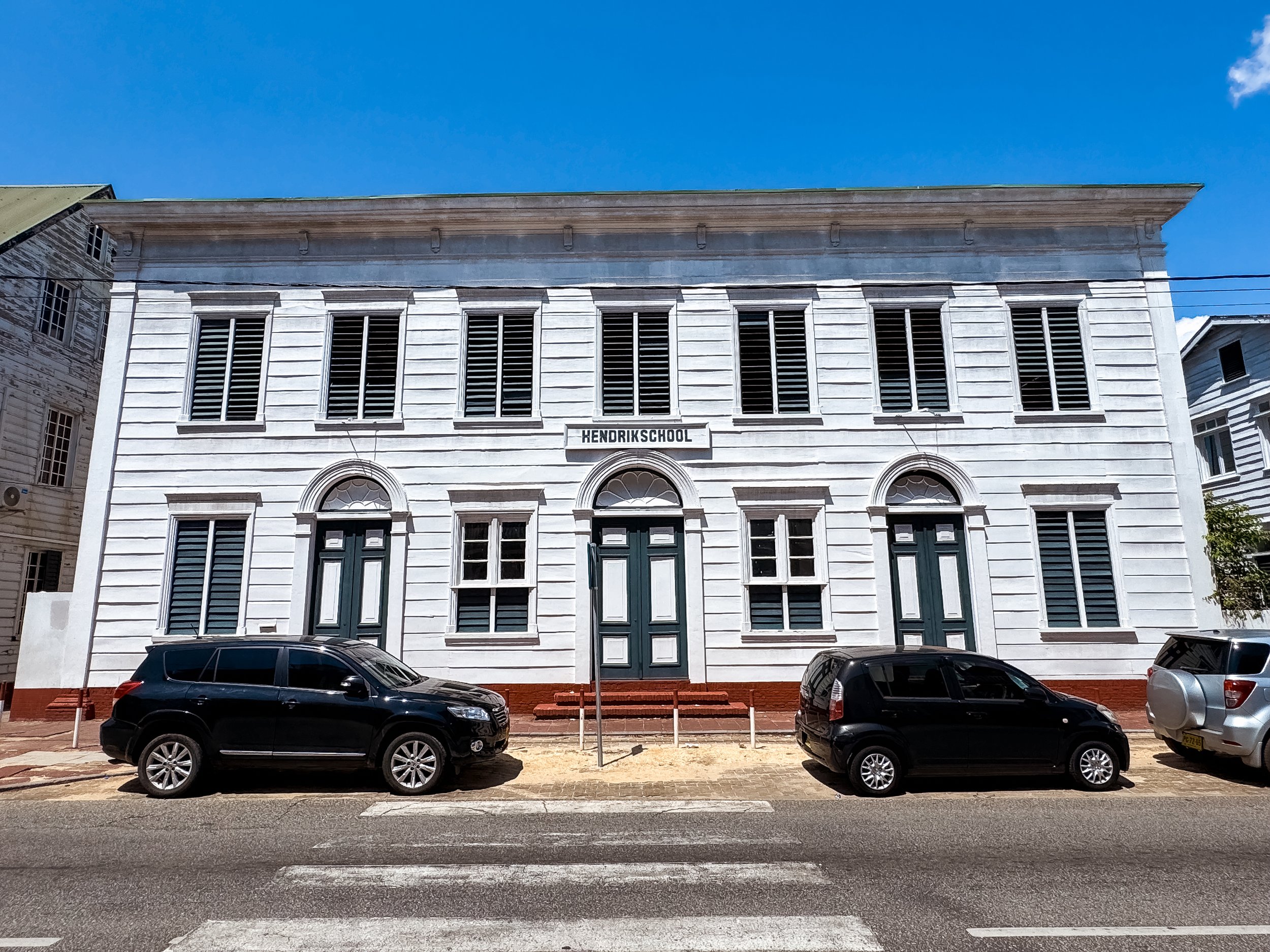
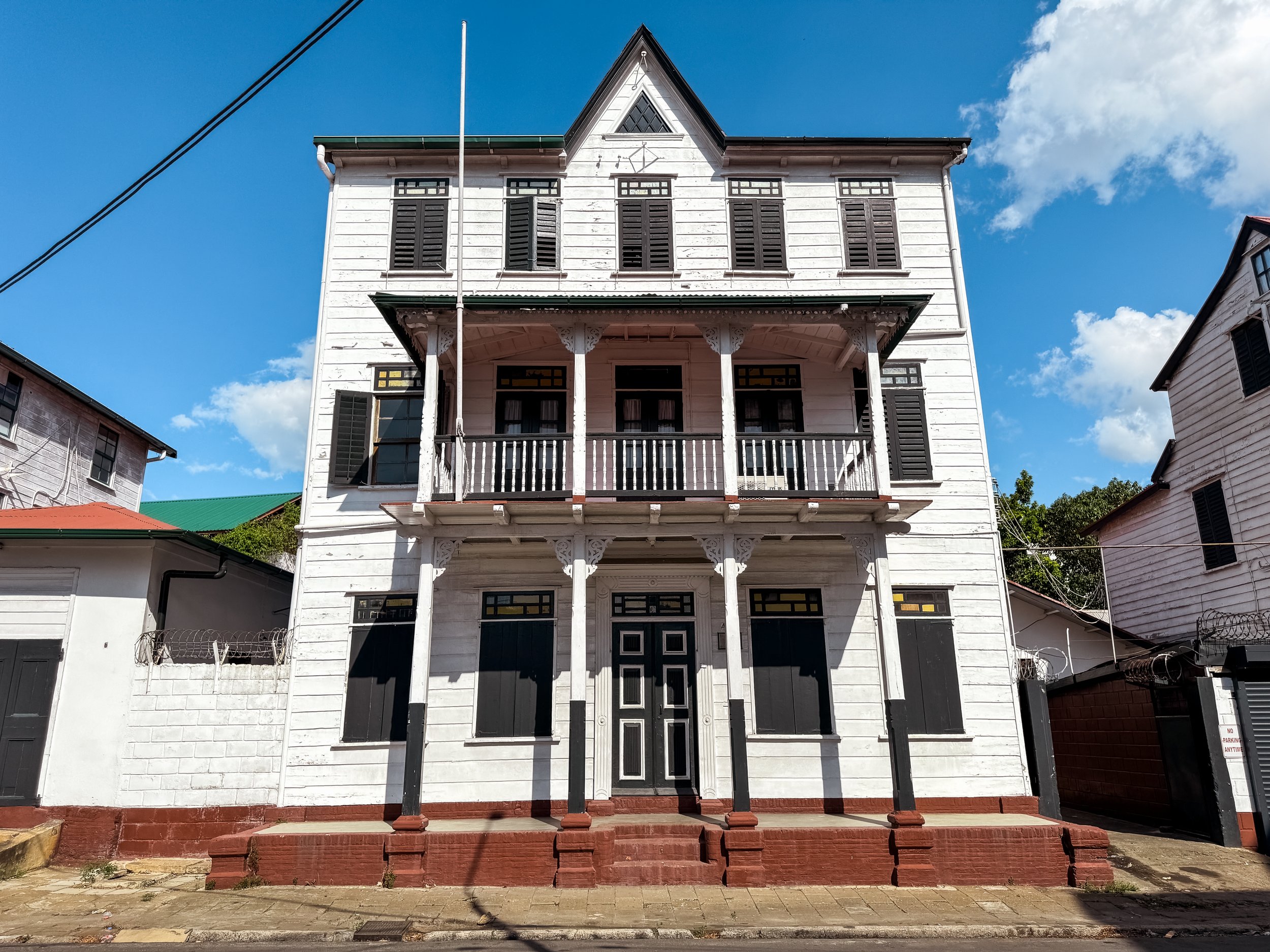
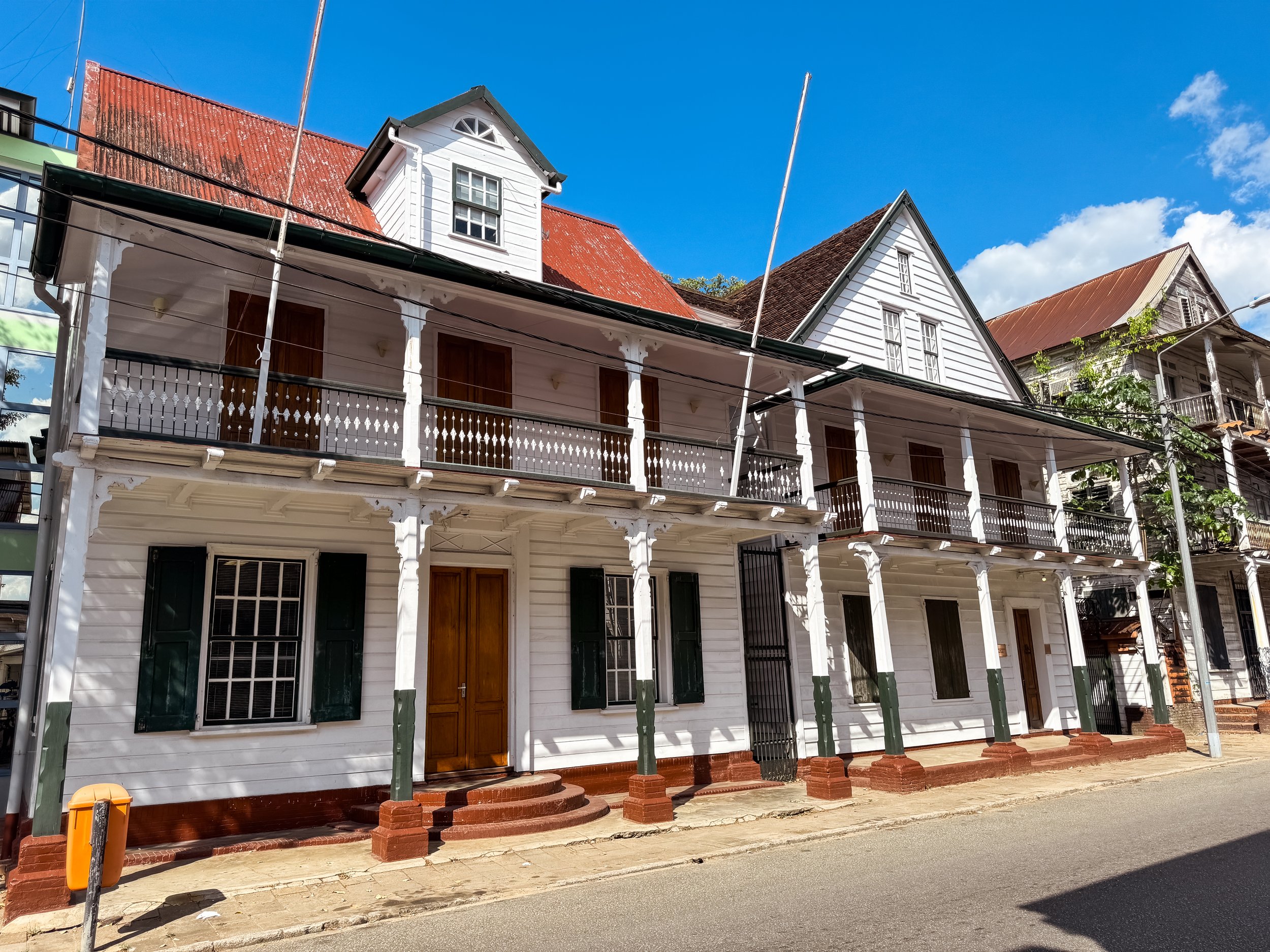
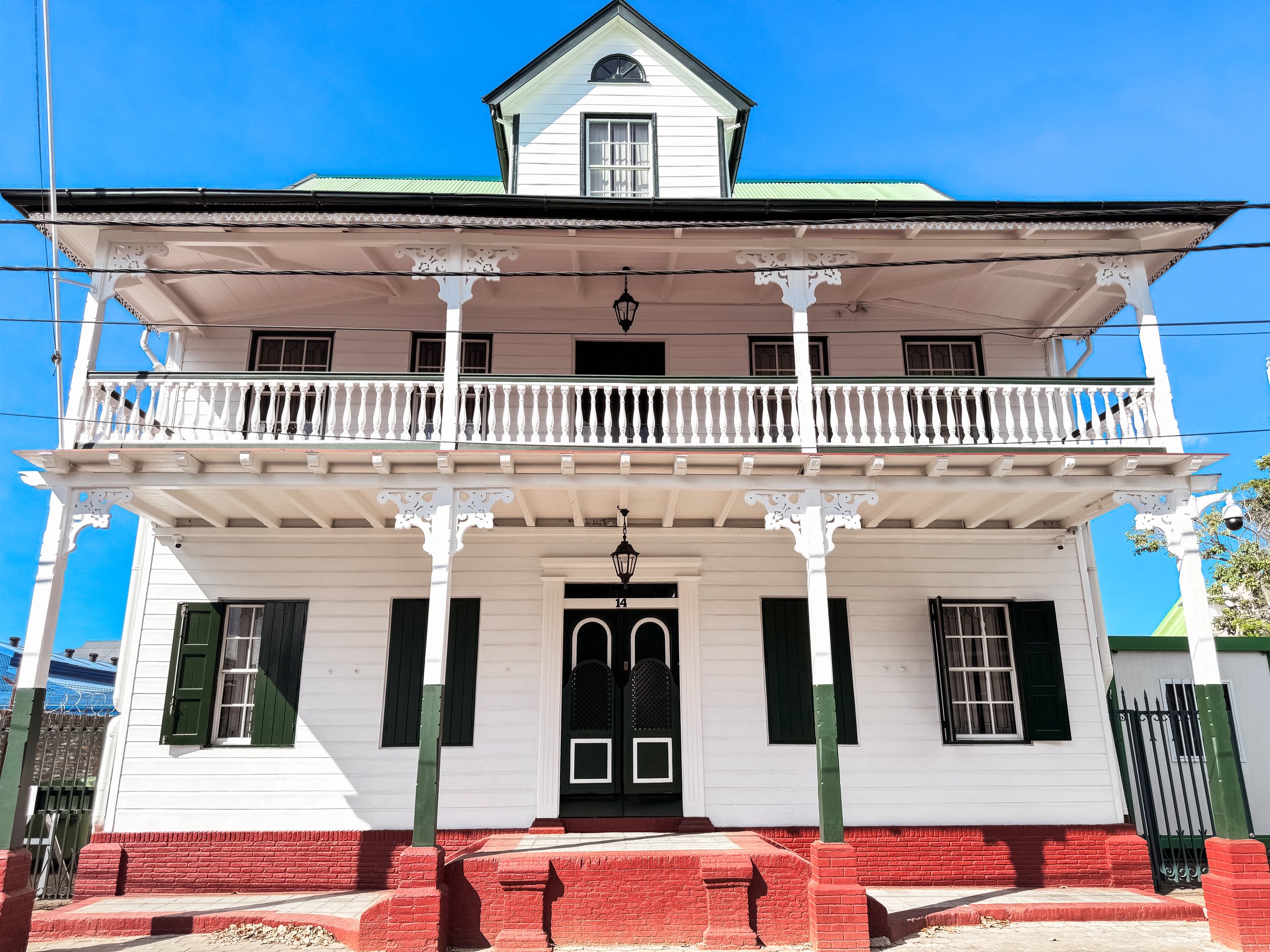

Neighborhoods & Streets
Combe. A neighborhood at the heart of Paramaribo with many historical sights, markets, restaurants & bars, hotels & hostels.
Van Sommelsdijck Street. A street with restaurants and various cuisines including Indian, Italian, Indonesian, Mediterranean and Japanese.
Jessurunstraat. A street with Dutch style houses, cafes, small inns and hostels, including the one we stayed at.
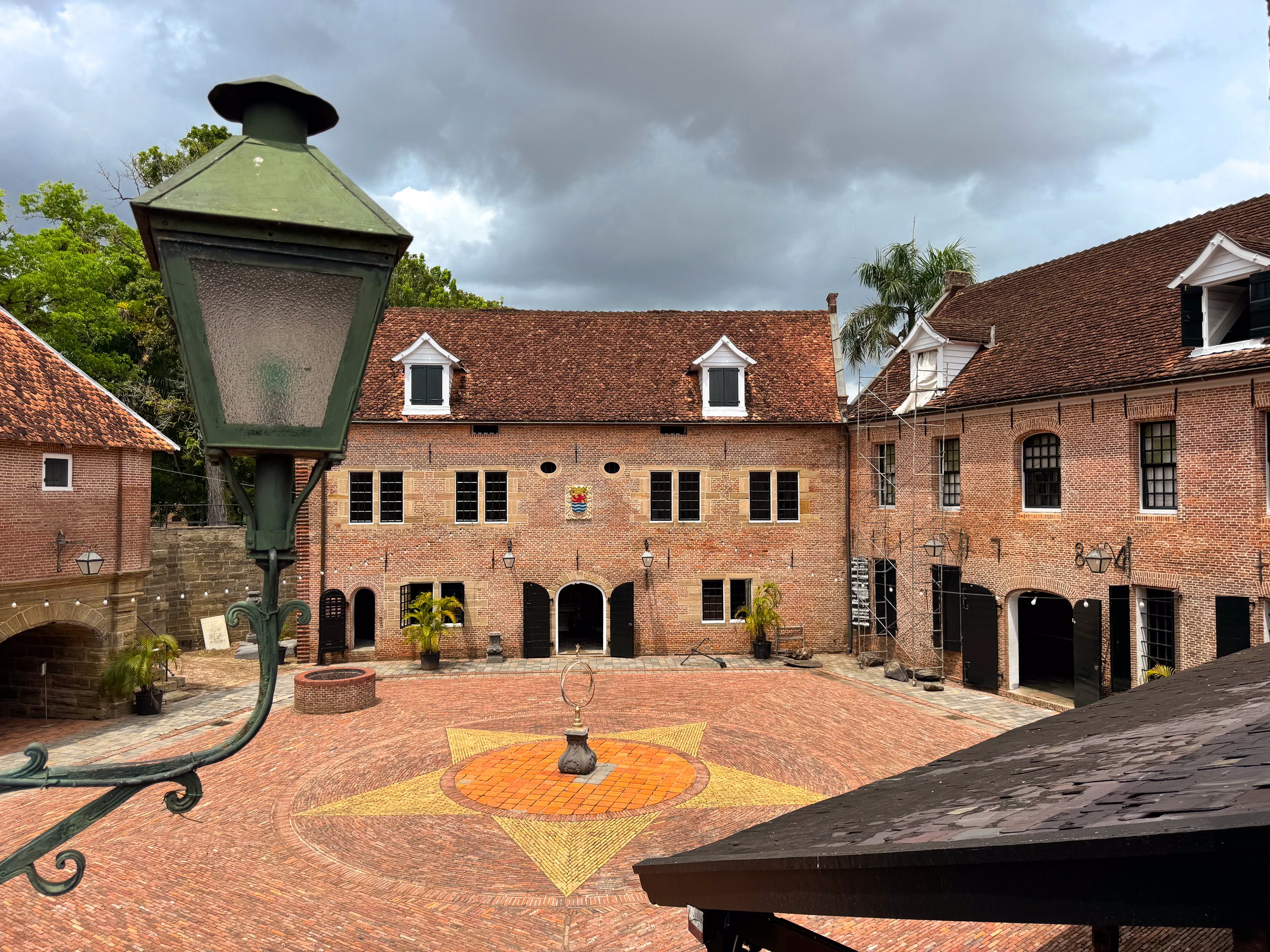

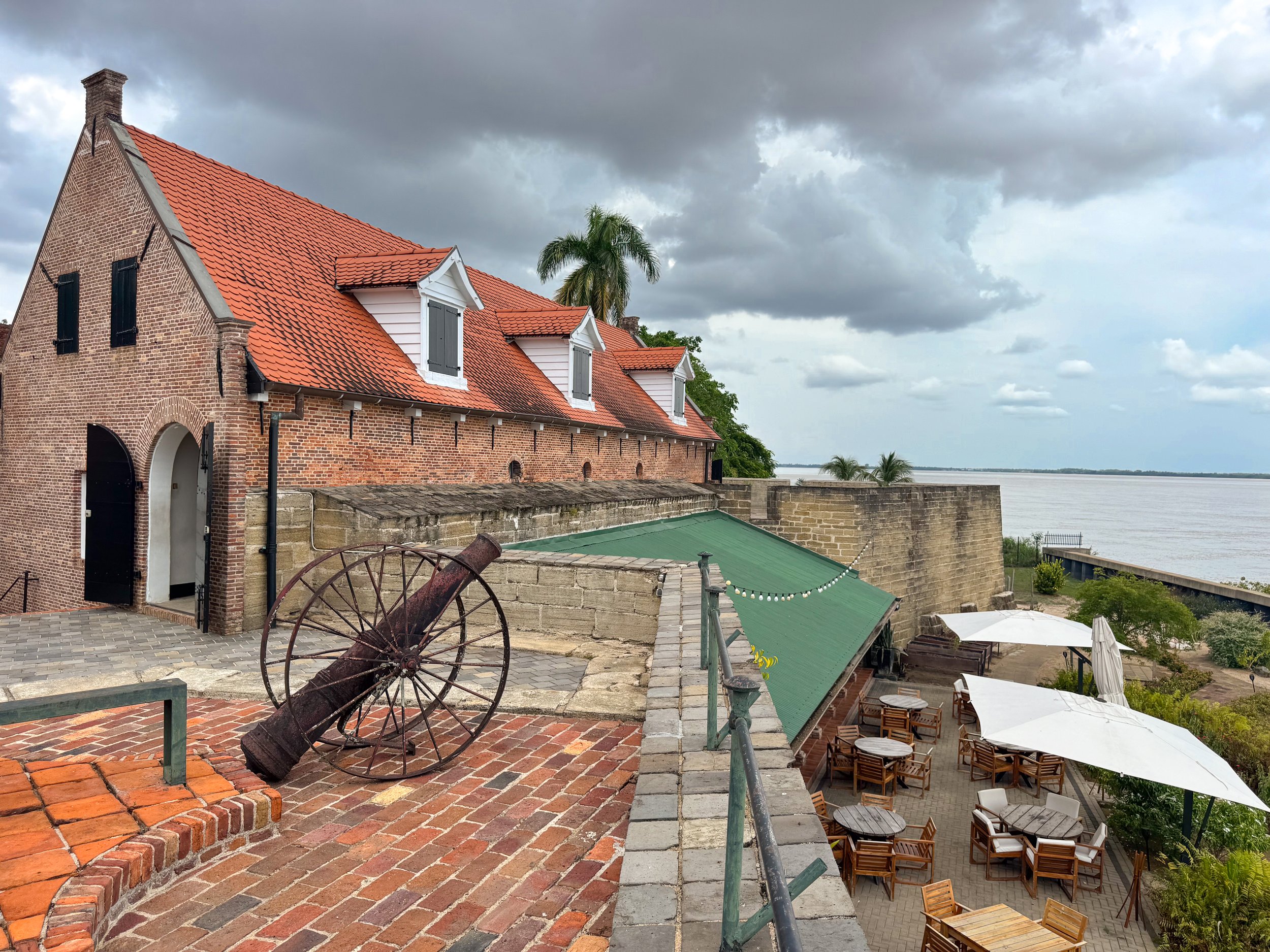
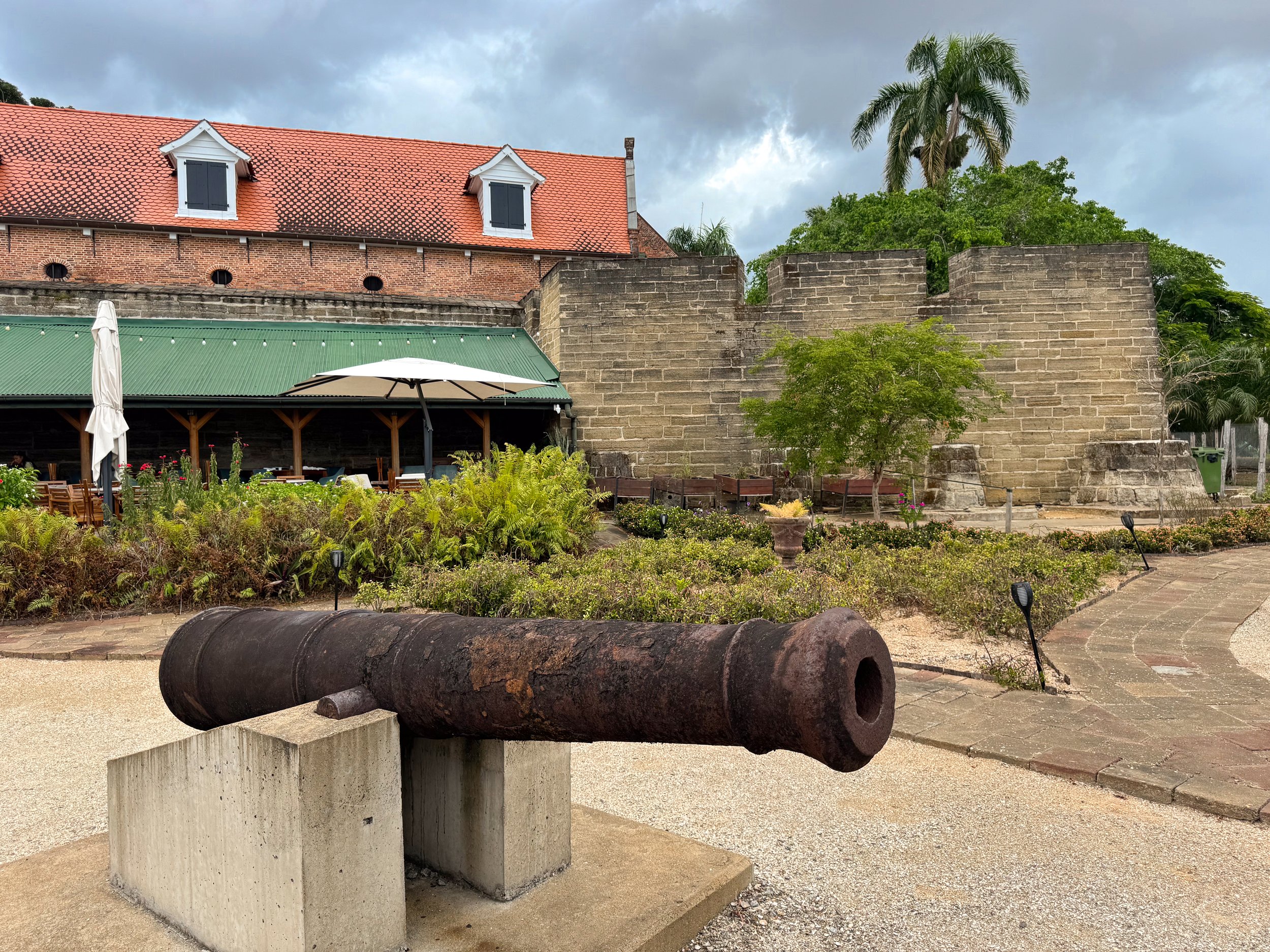
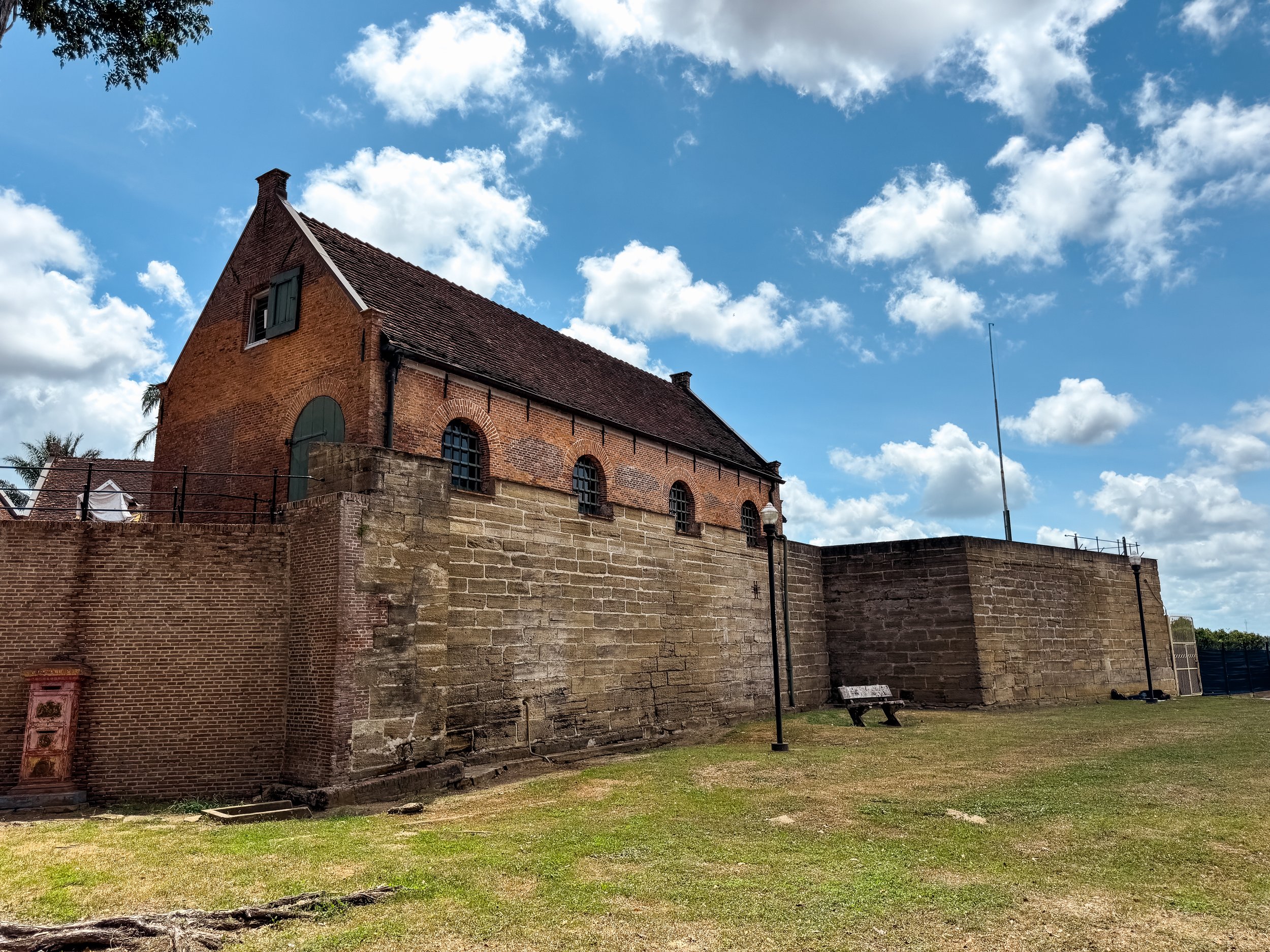
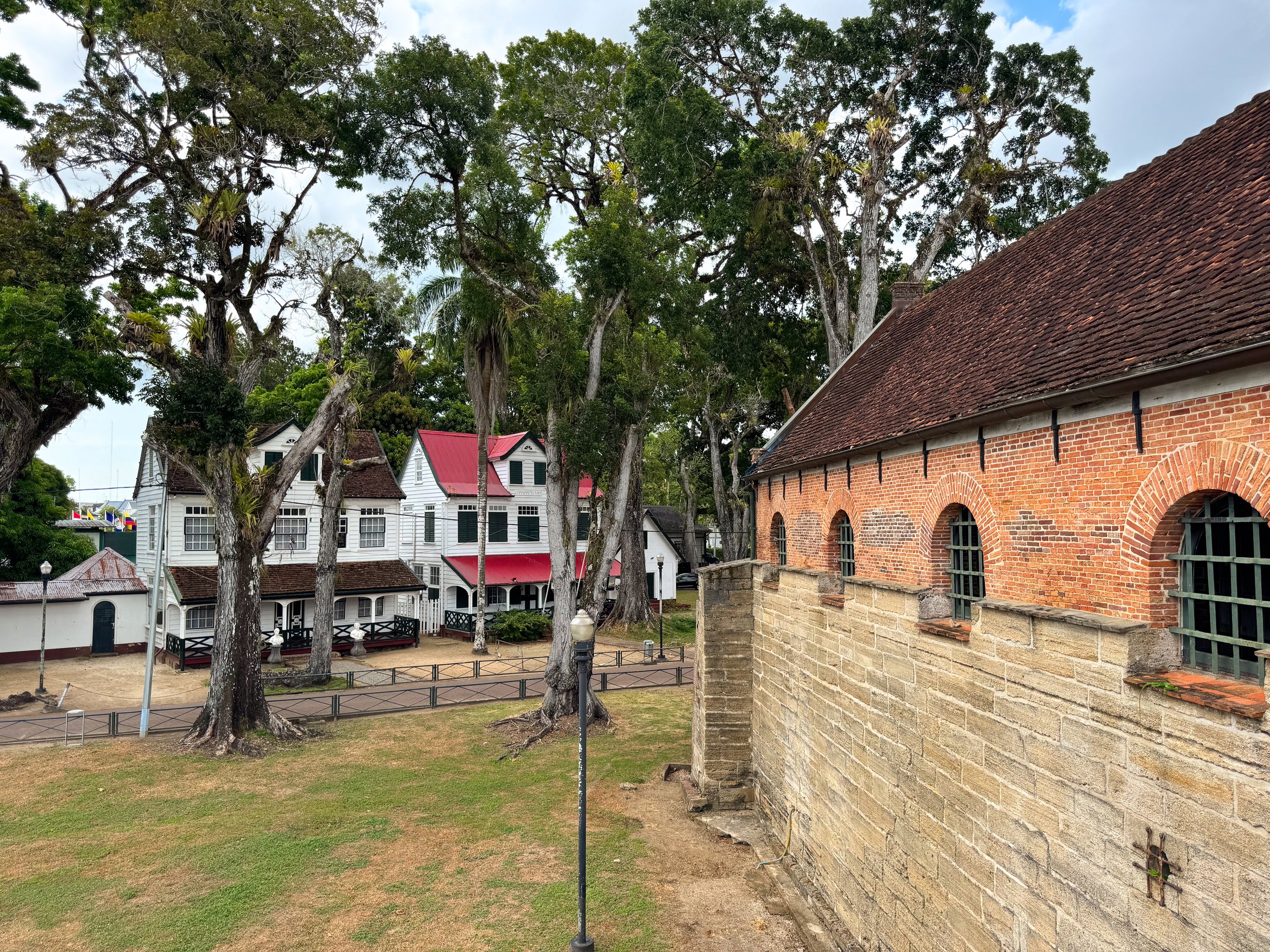
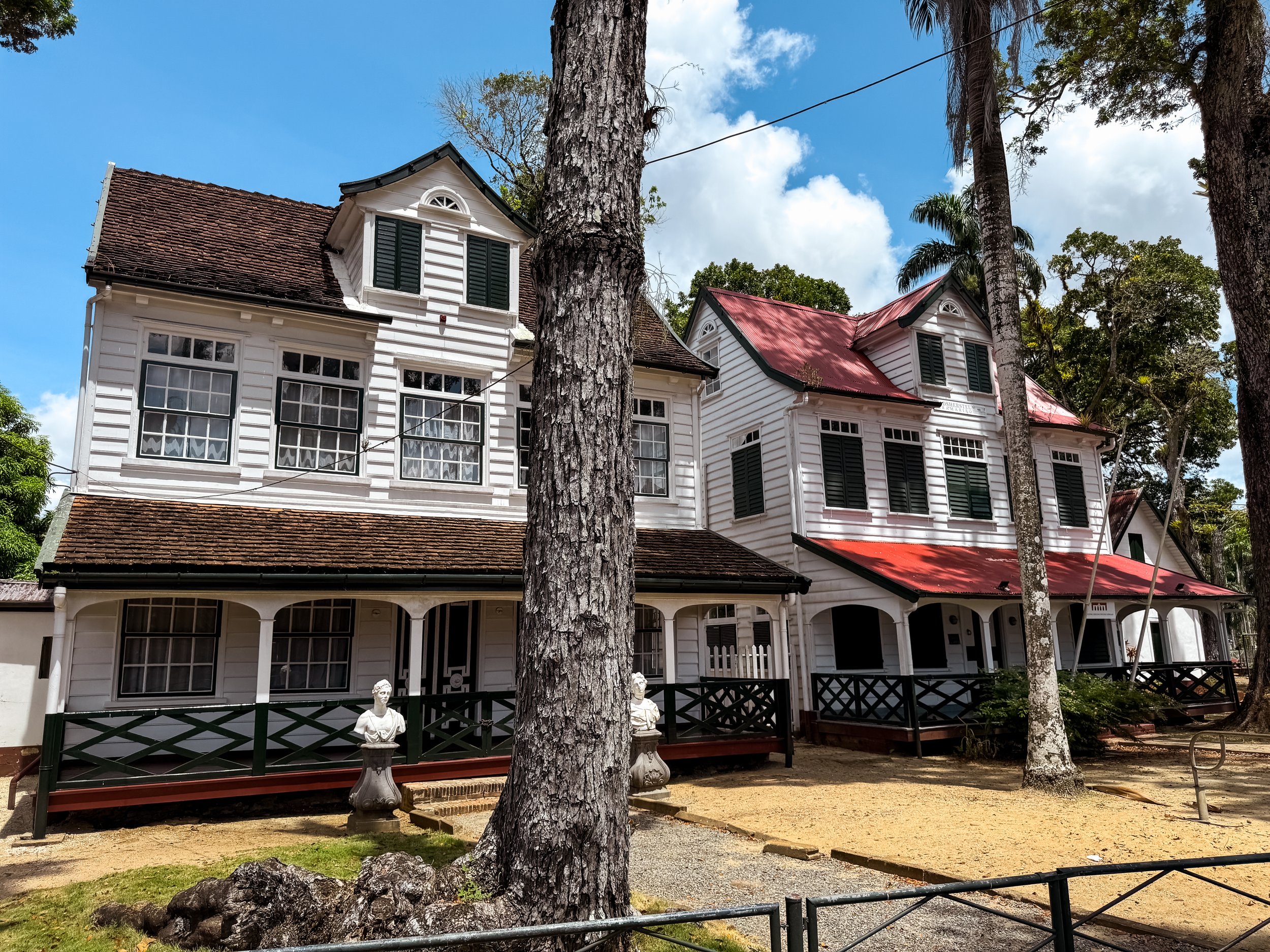
Sights
Fort Zelandia. A historic waterfront fort with a hexagonal stone wall, brick courtyard and buildings within. Outside of its walls is the old town with multiple Dutch colonial wooden houses, cannons, and tall trees.
The fort houses the Suriname Museum, with exhibits telling the history of Suriname from its colonial past to independence with artifacts from enslaved Africans, the Maroon people and Pre-Colombia cultures.
On the ground floor of the fort is, Baka Foto, a refined feeling restaurant and bar with a garden overlooking river. After touring the fort, we stopped in to sip on Borgoe, a Surinamese rum. It had the sweet spiciness of a rum and flavor of a cognac.
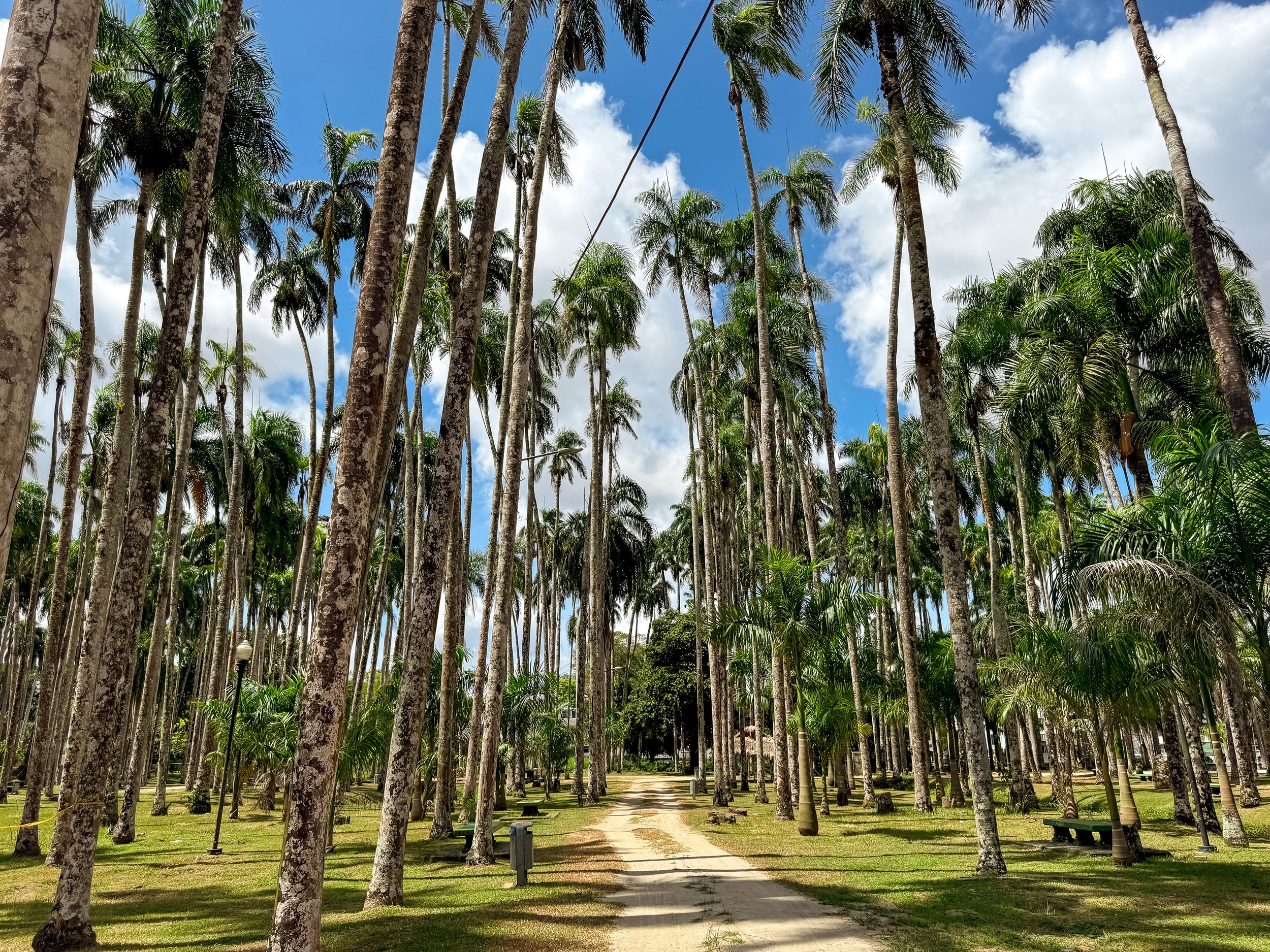
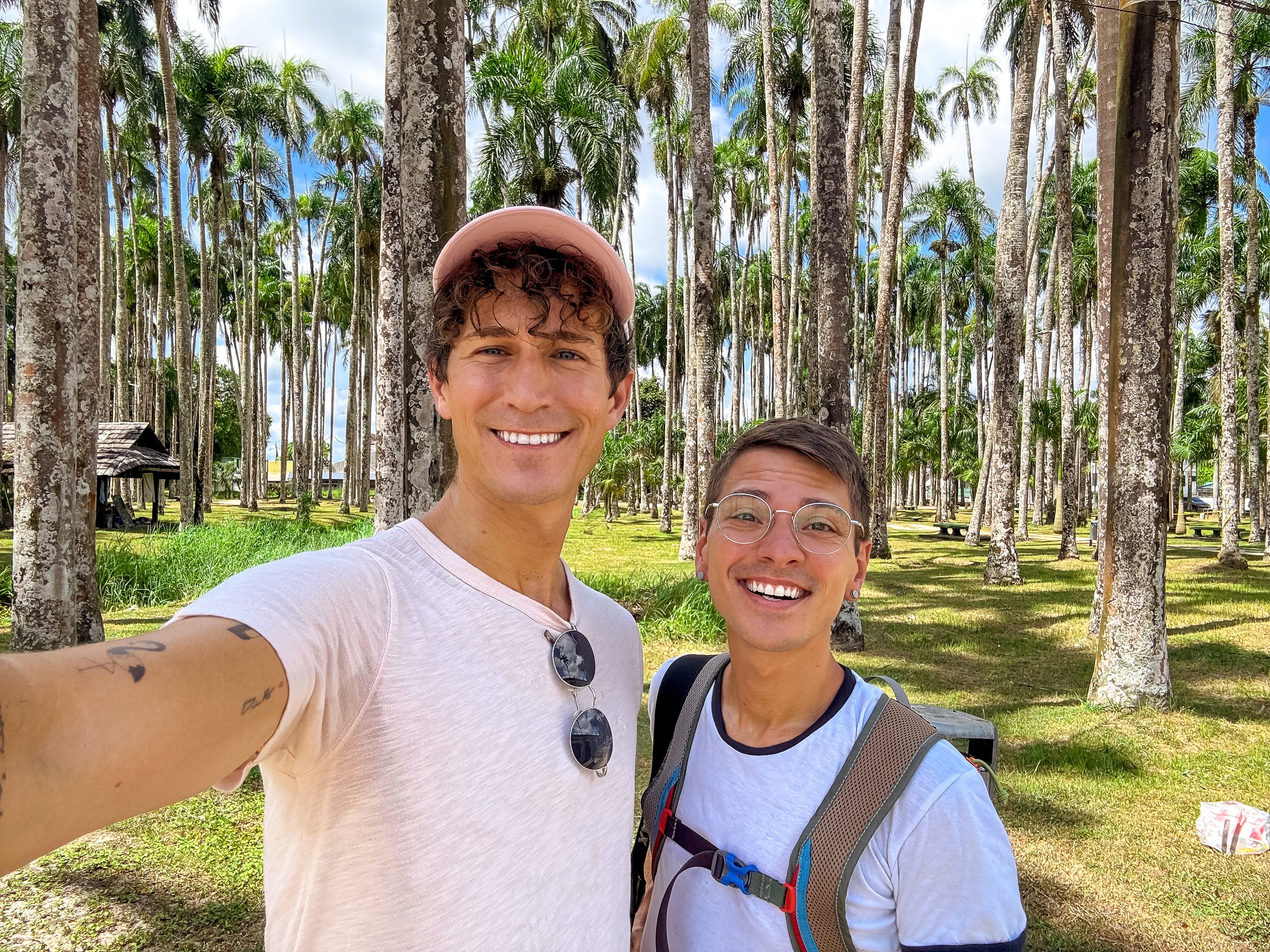
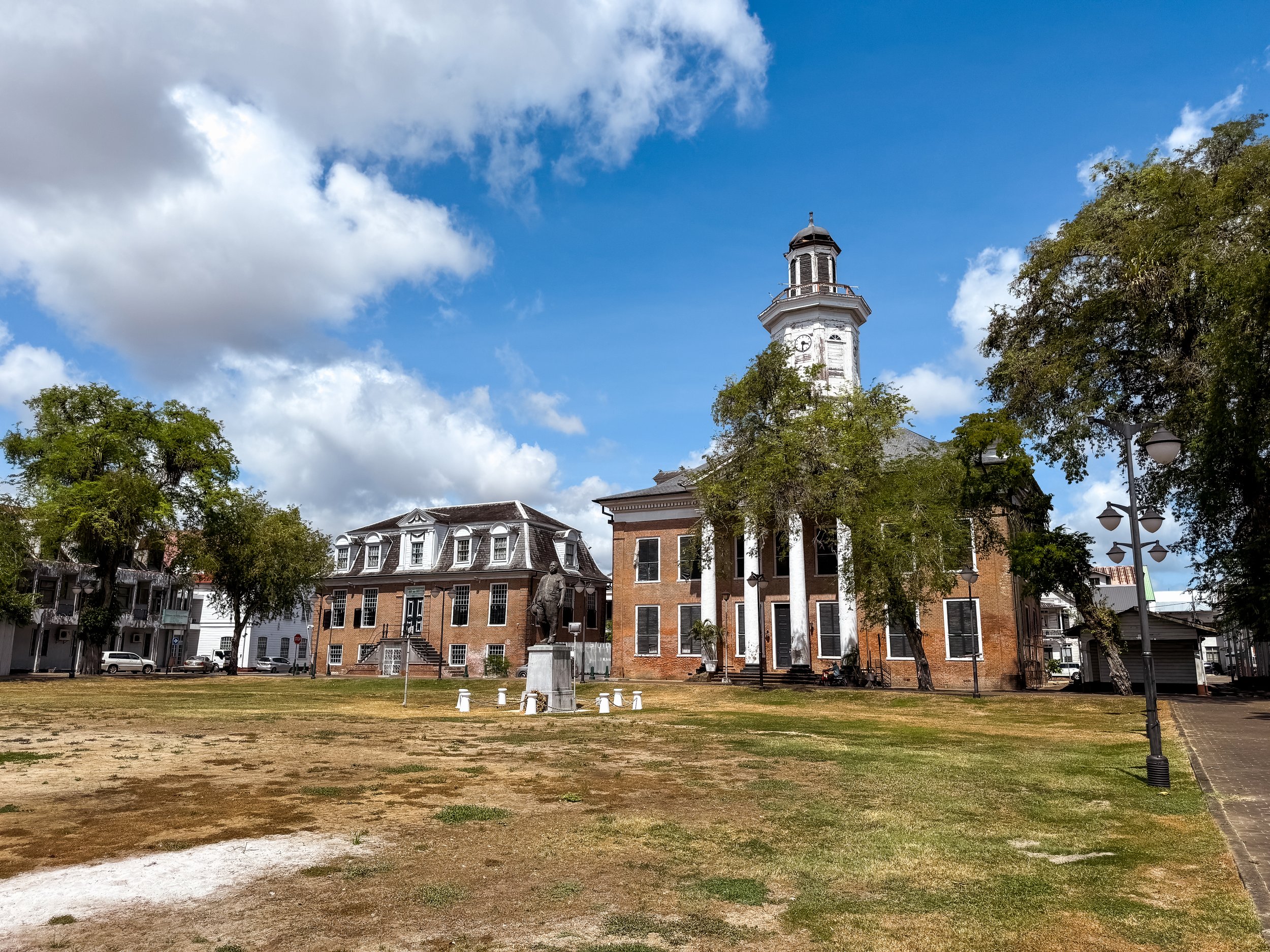
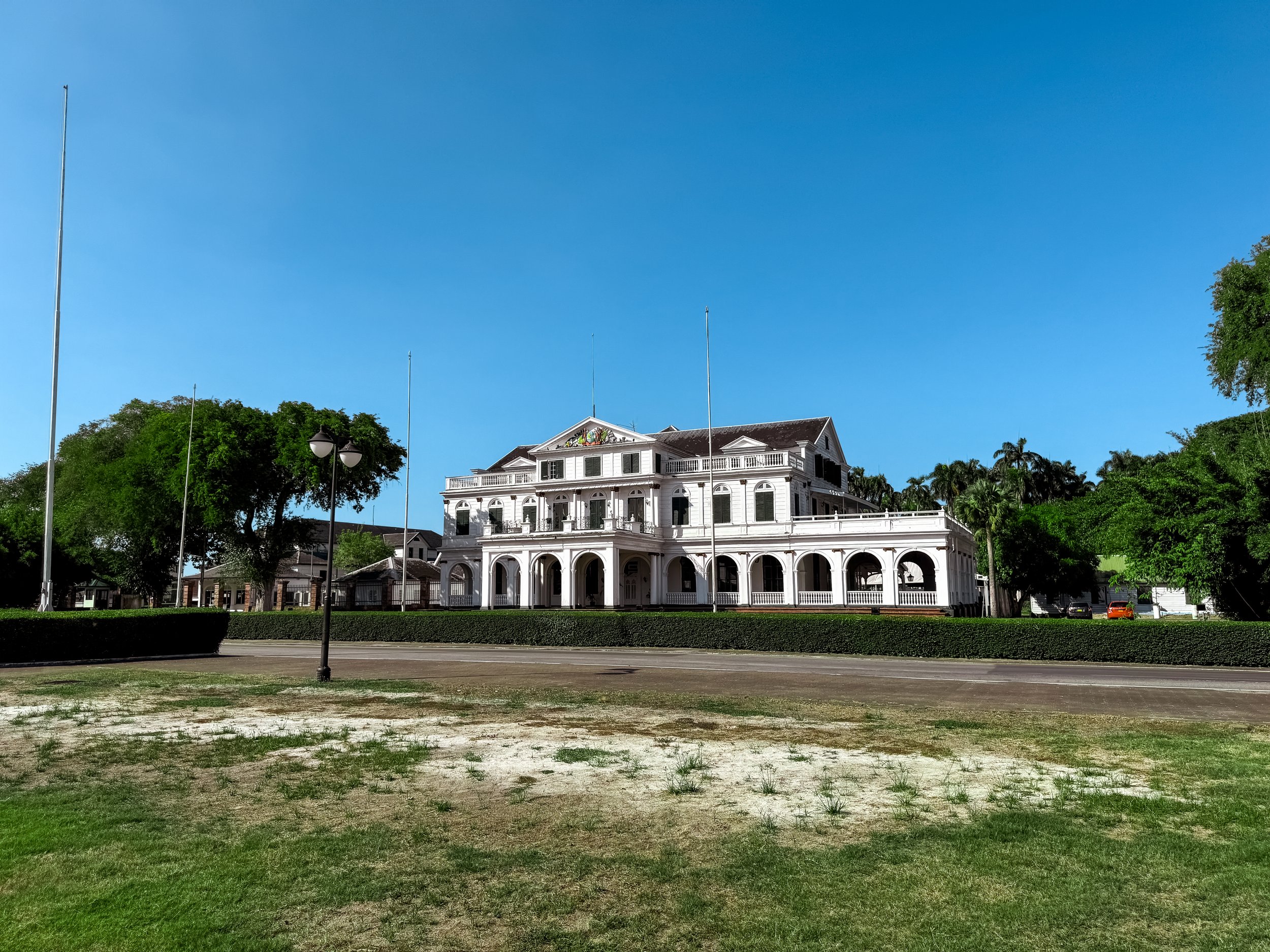
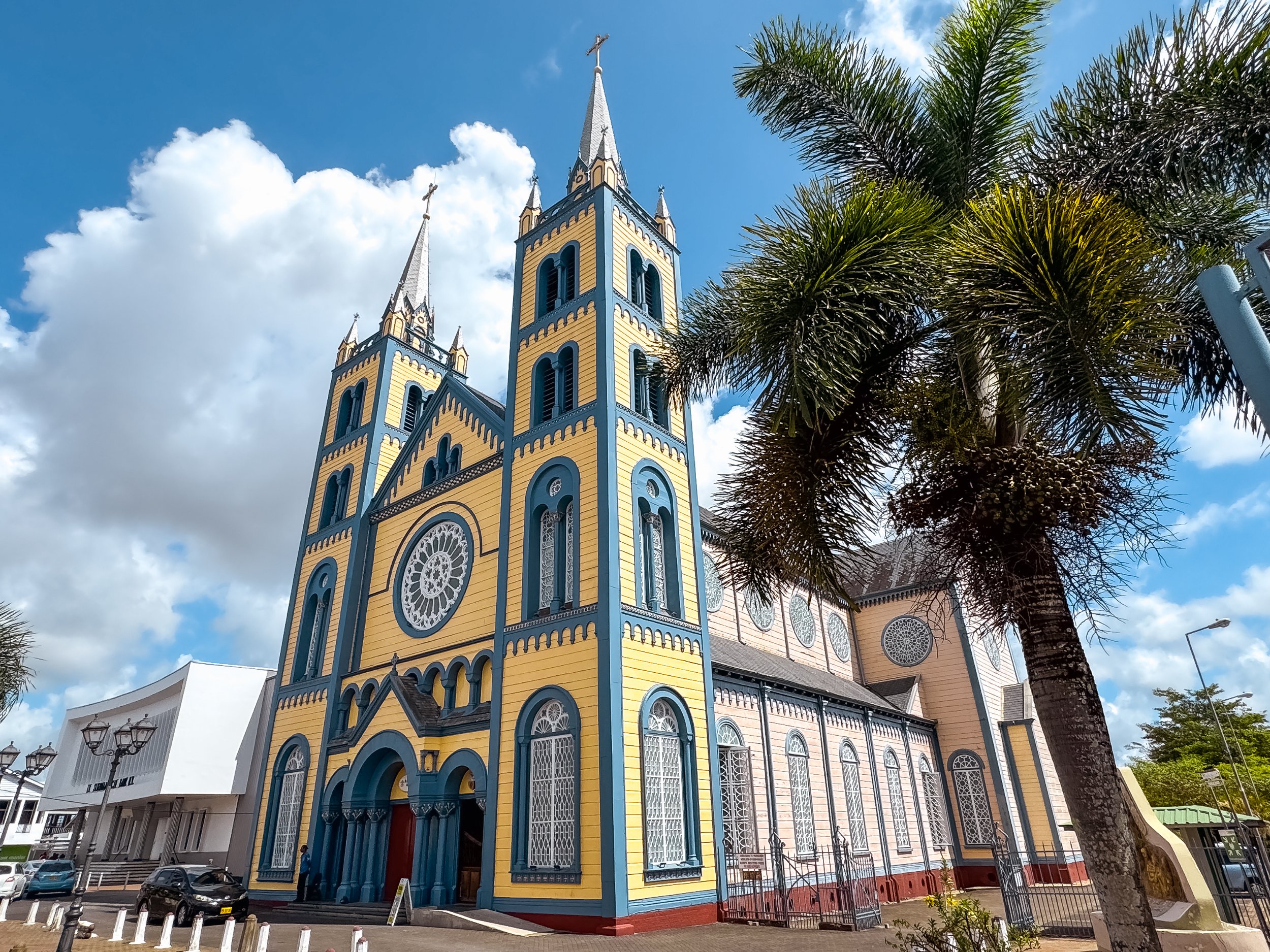
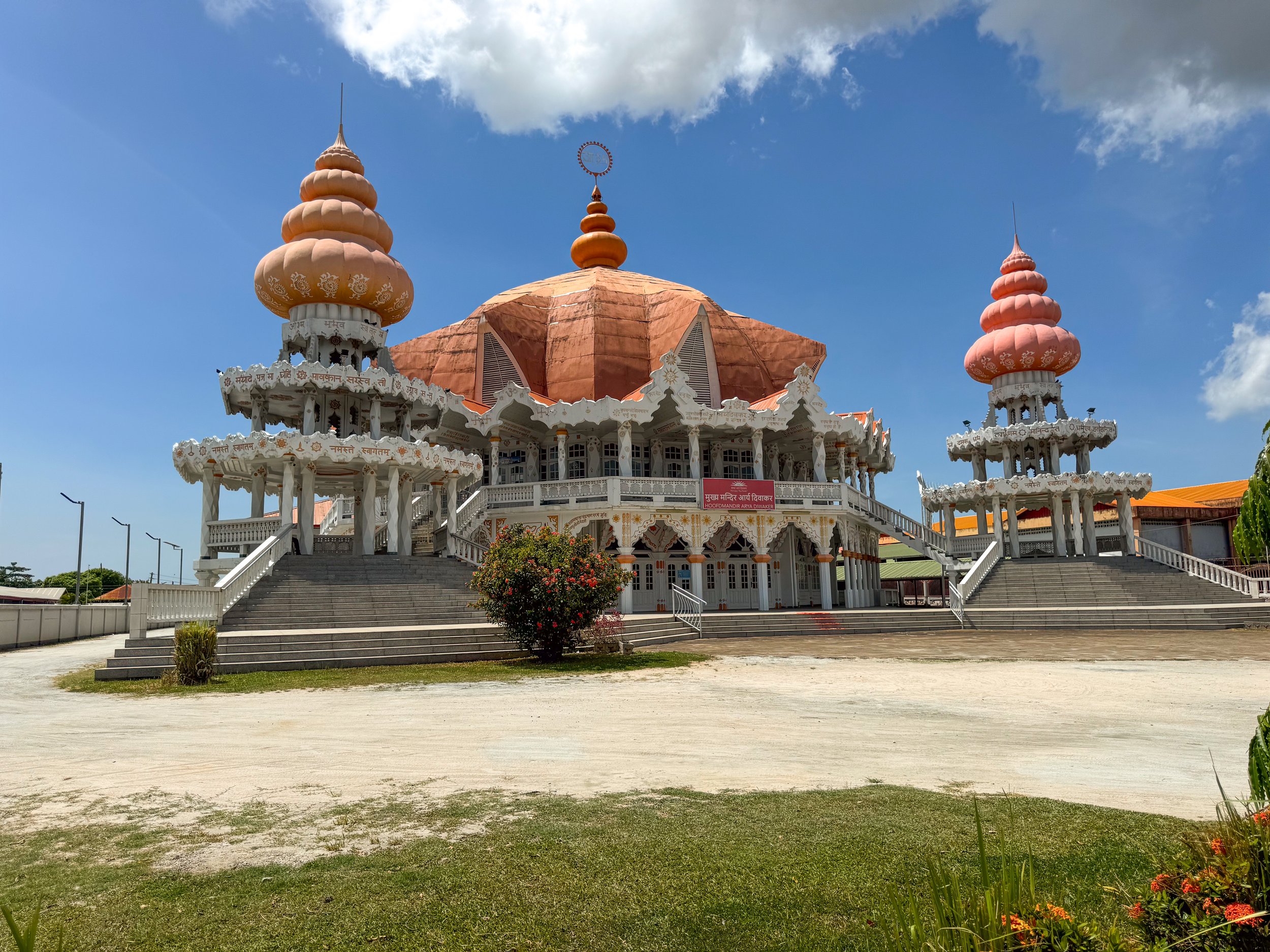
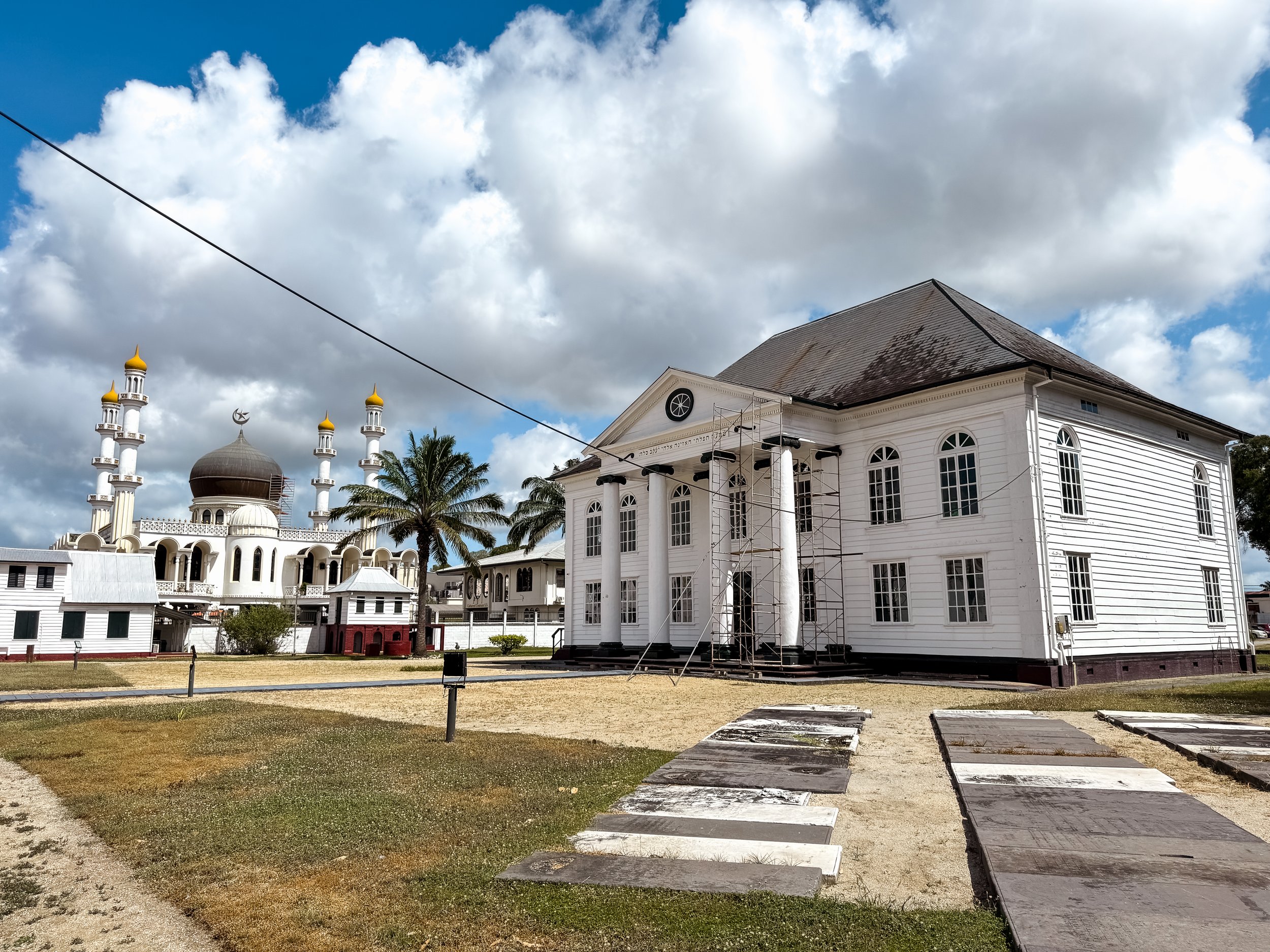


Waterkant Boulevard. A waterfront park on the Suriname River with historic Dutch colonial buildings. When we visited, the park was closed for a lengthy renovation. Even so, we got to admire the architecture characterized by its white painted wooden facades, tiled roofs, green window and door moldings and red brick foundation.
Independence Square. A gravel plaza surrounded by Suriname’s government buildings including the Presidential Palace, House of Justice, National Assembly and Ministry of Finance.
Presidential Palace. A large wooden Dutch style mansion home to Suriname’s presidency.
Palmentuin. The presidential palm garden with hundreds of towering palm trees, walkways and monuments. Come here to listen to the birds chirping and singing.
Religious Sights. Suriname is proud of its cultural diversity, a fact that is evident by their various sights of worship including churches, mosques and Hindu temples across the city.
St Peter & Paul Cathedral. A large wooden basilica with a painted blue, yellow and peach colored facade decorated in Dutch style moldings.
Arya Dewaker. A large Hindu temple with a domed temple hall and Dutch style influences like its symmetrical design and paned windows.
Mosque Keizerstraat. A large beautifully designed mosque with four minarets and a central domed hall.
Nevah Shalom Synagogue. A Dutch style wooden temple with a symmetrical design, white facade, paned windows and tall columns.
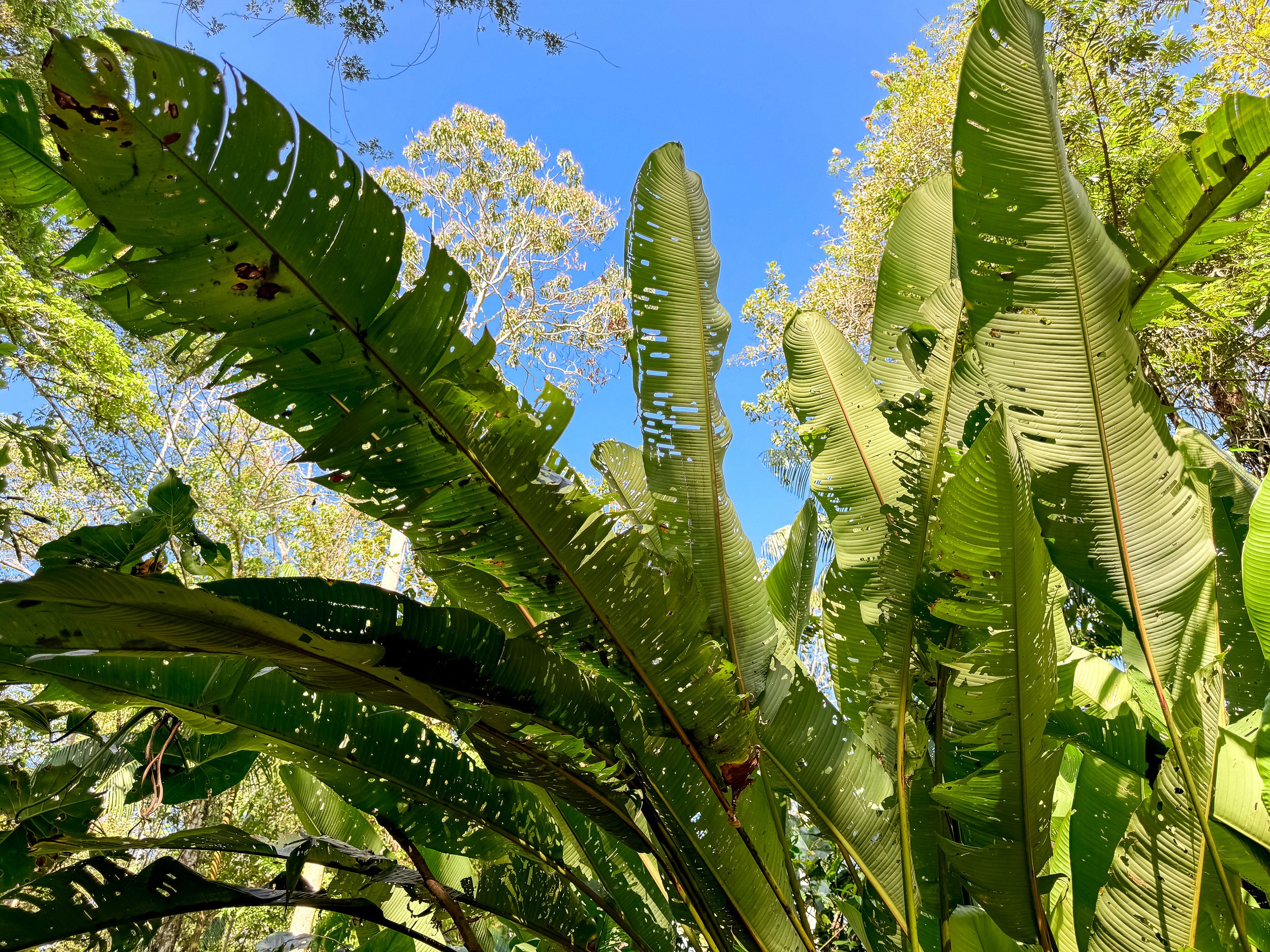
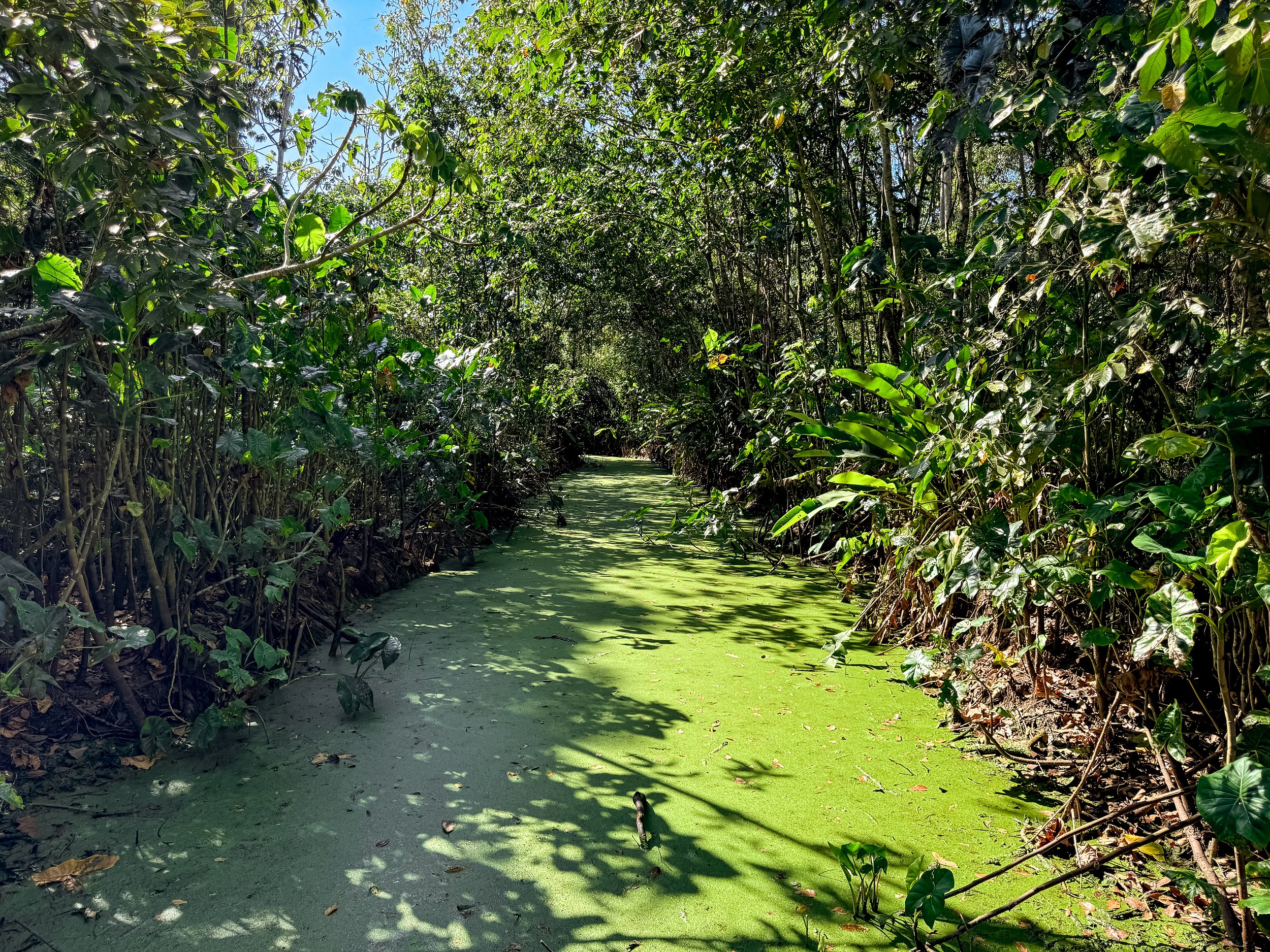
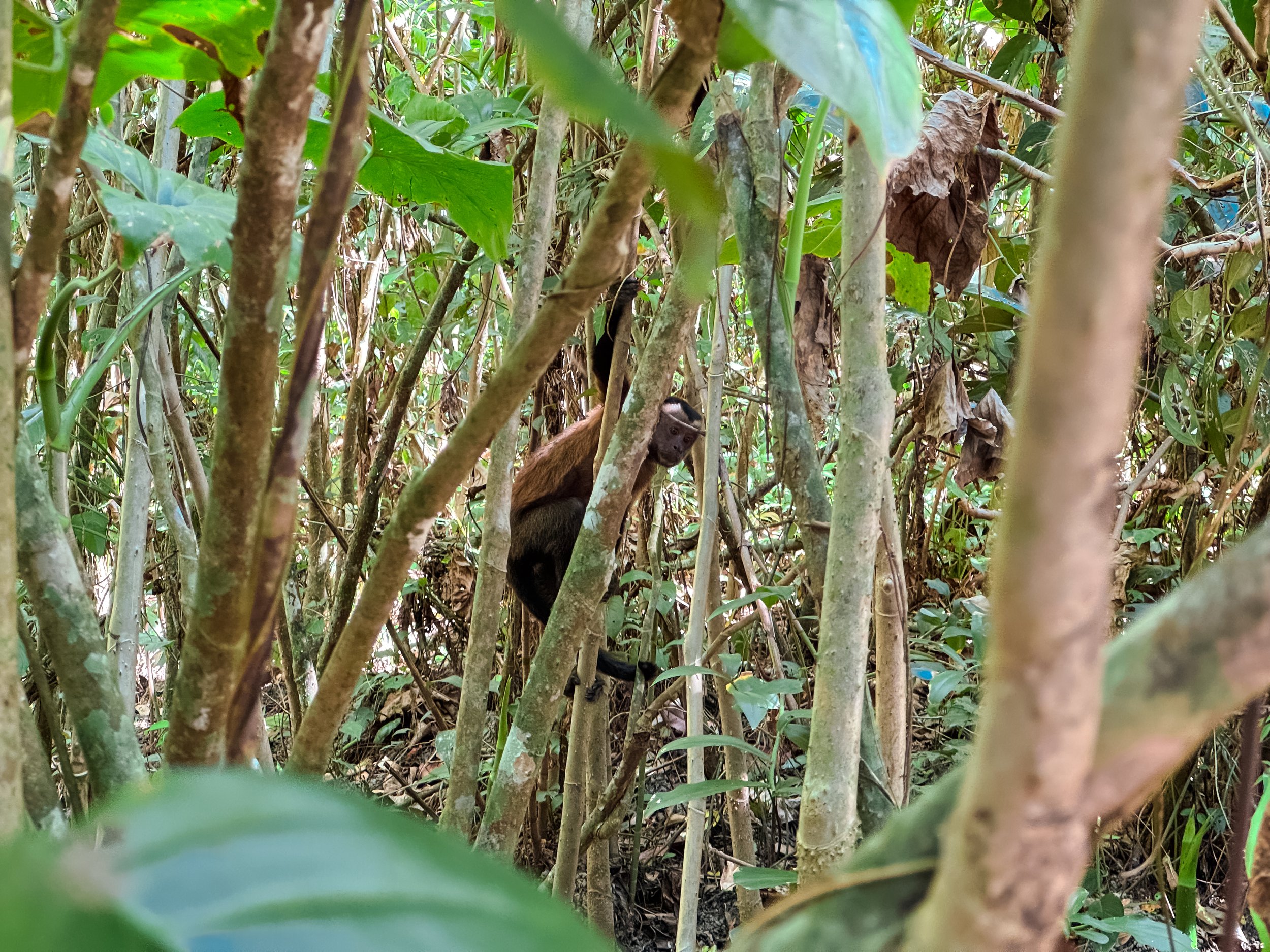
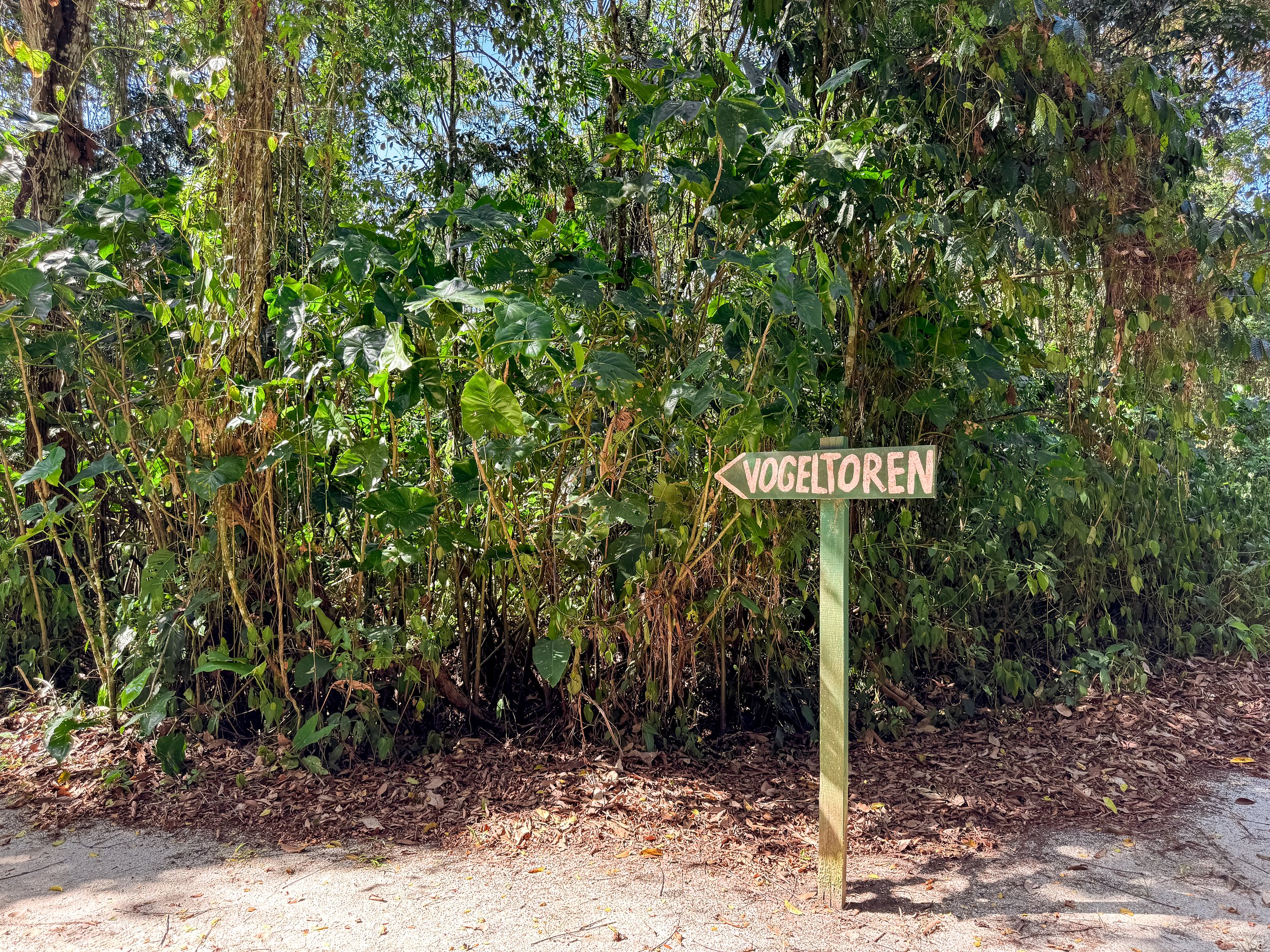
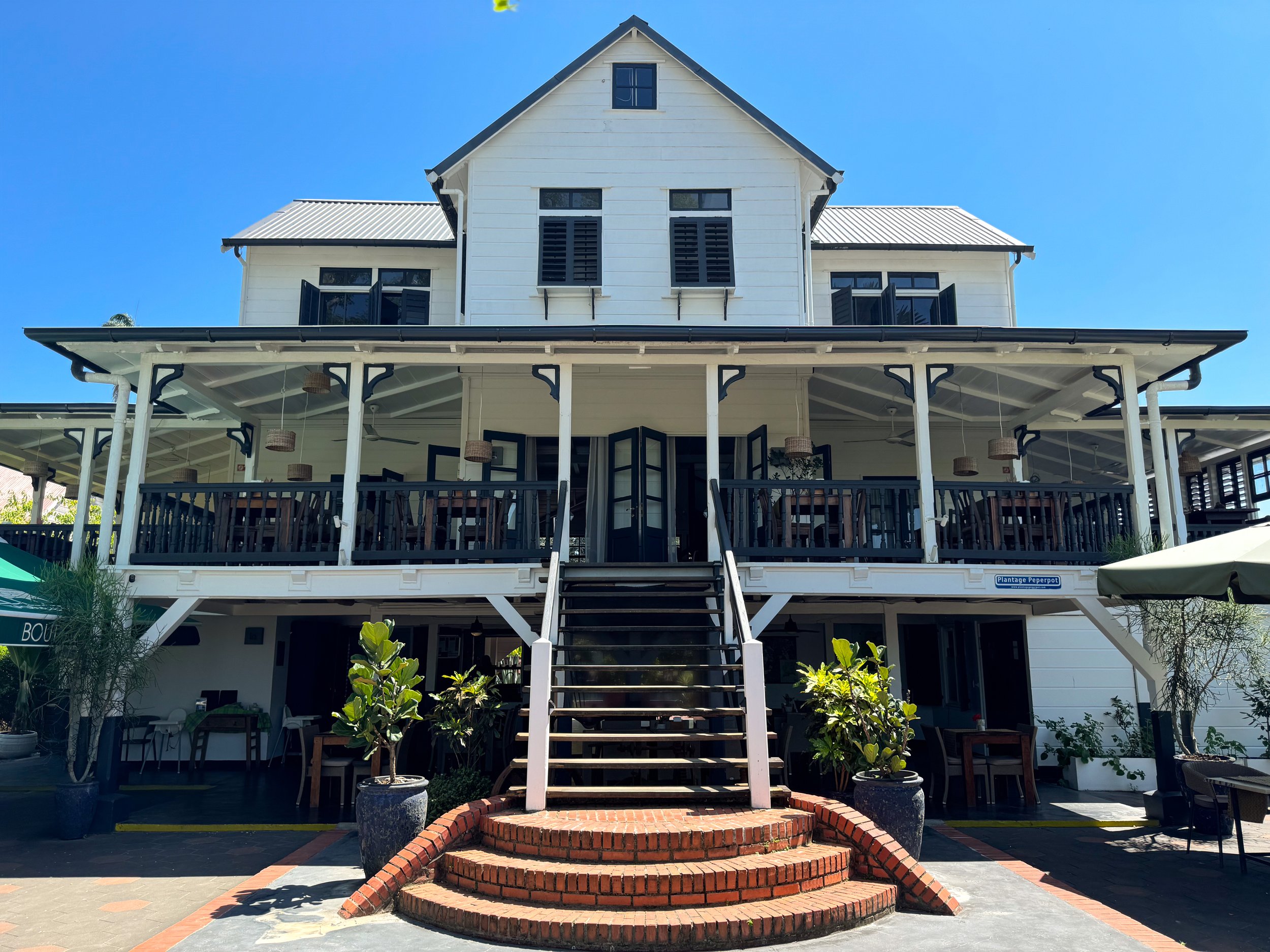
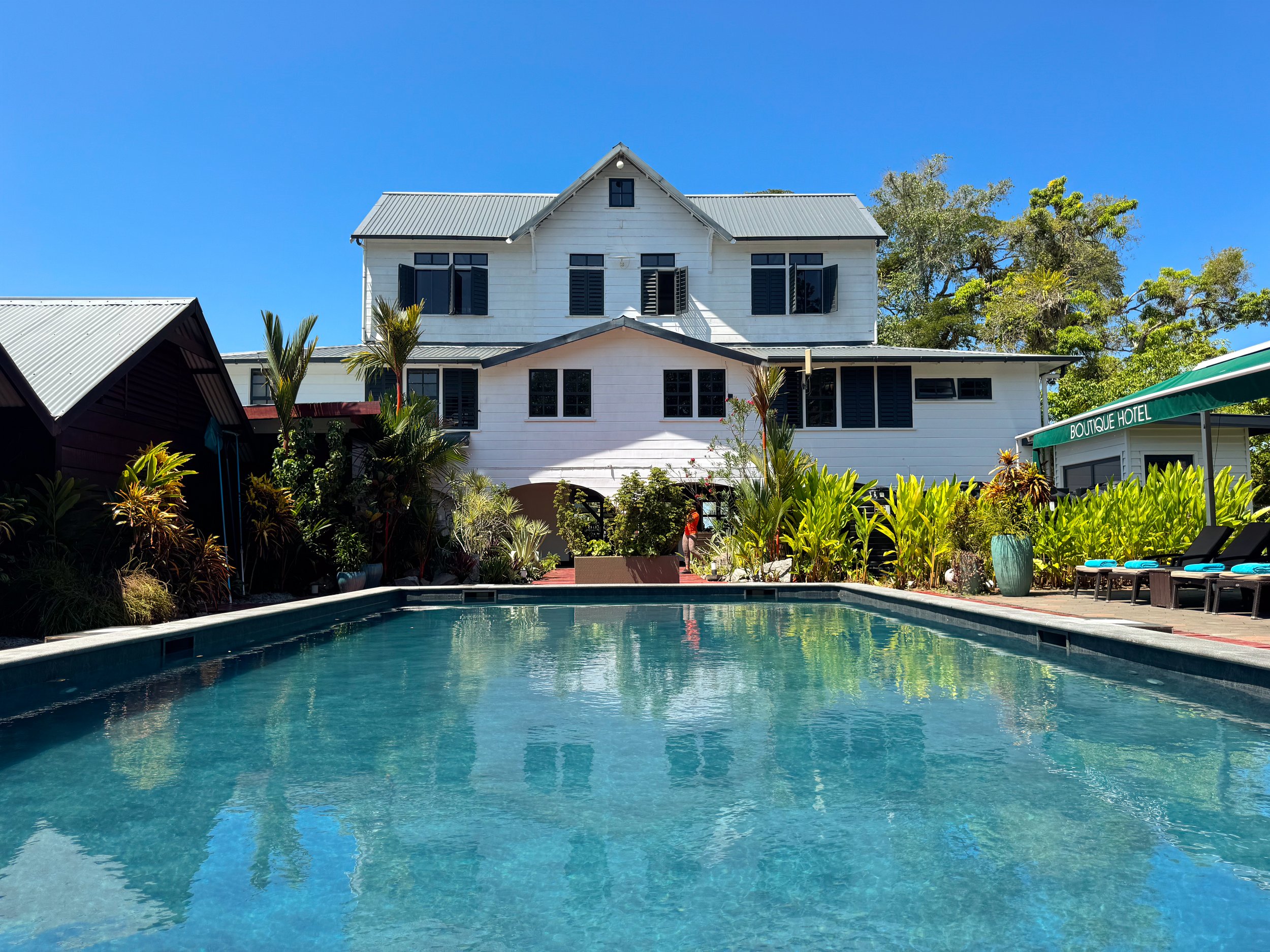
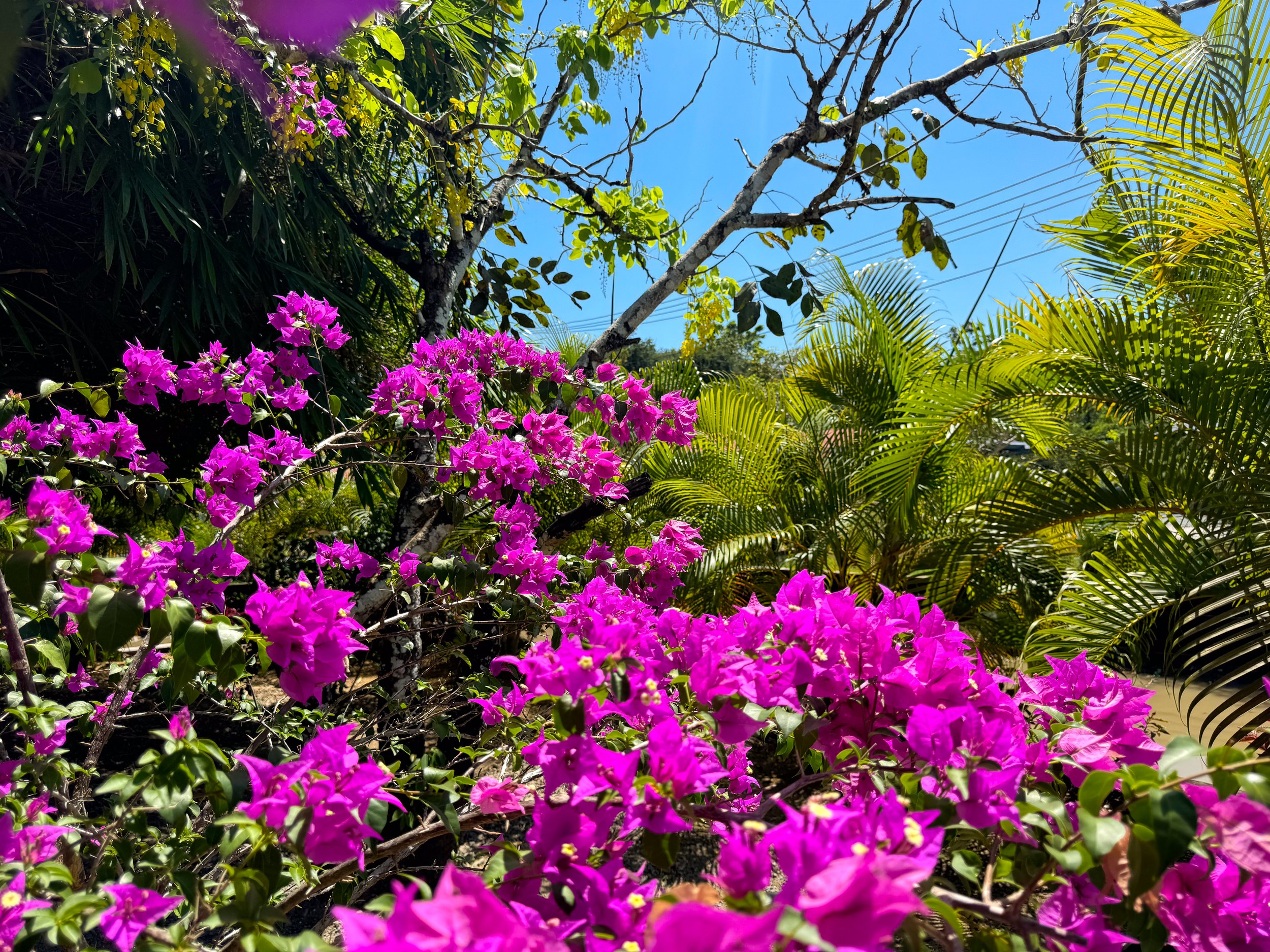
Peper Pot Nature Park. Across from Paramaribo on the other side of the Suriname River are many former sugar cane and coffee plantations, since converted into farmland, nature reserves and residential neighborhoods.
We visited Peper Pot, a nature park with lush trails and dirt roadways for walking and biking. Along the trails, we spotted families of squirrel and capuchin monkeys, rainbow lizards, yellow breasted corn birds and scarlet peacock butterflies. Pepper Pot continued to produce coffee through the mid 1990s. Since then the former Dutch colonial plantation buildings have been converted into a boutique hotel with a restaurant and pool.
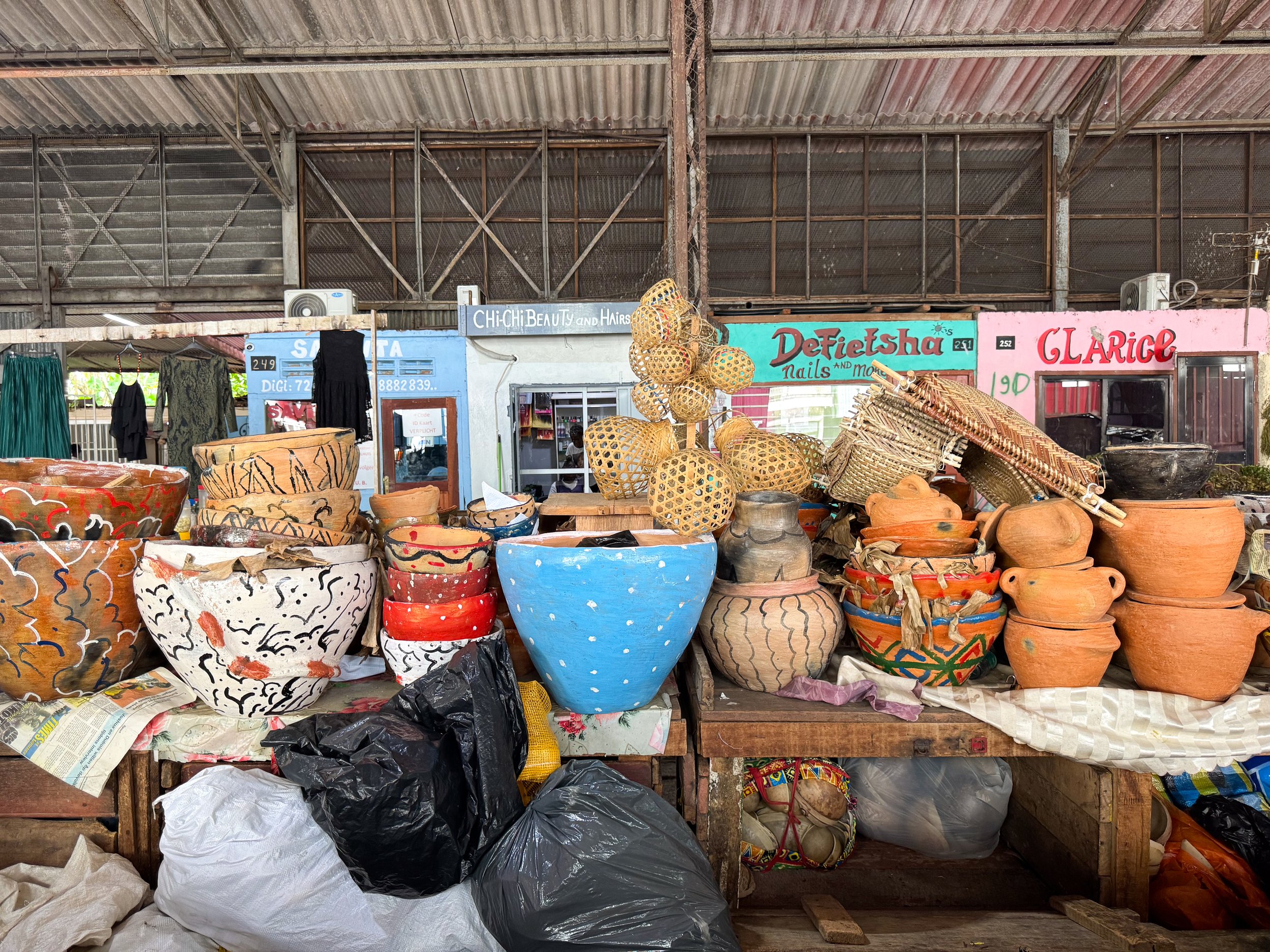
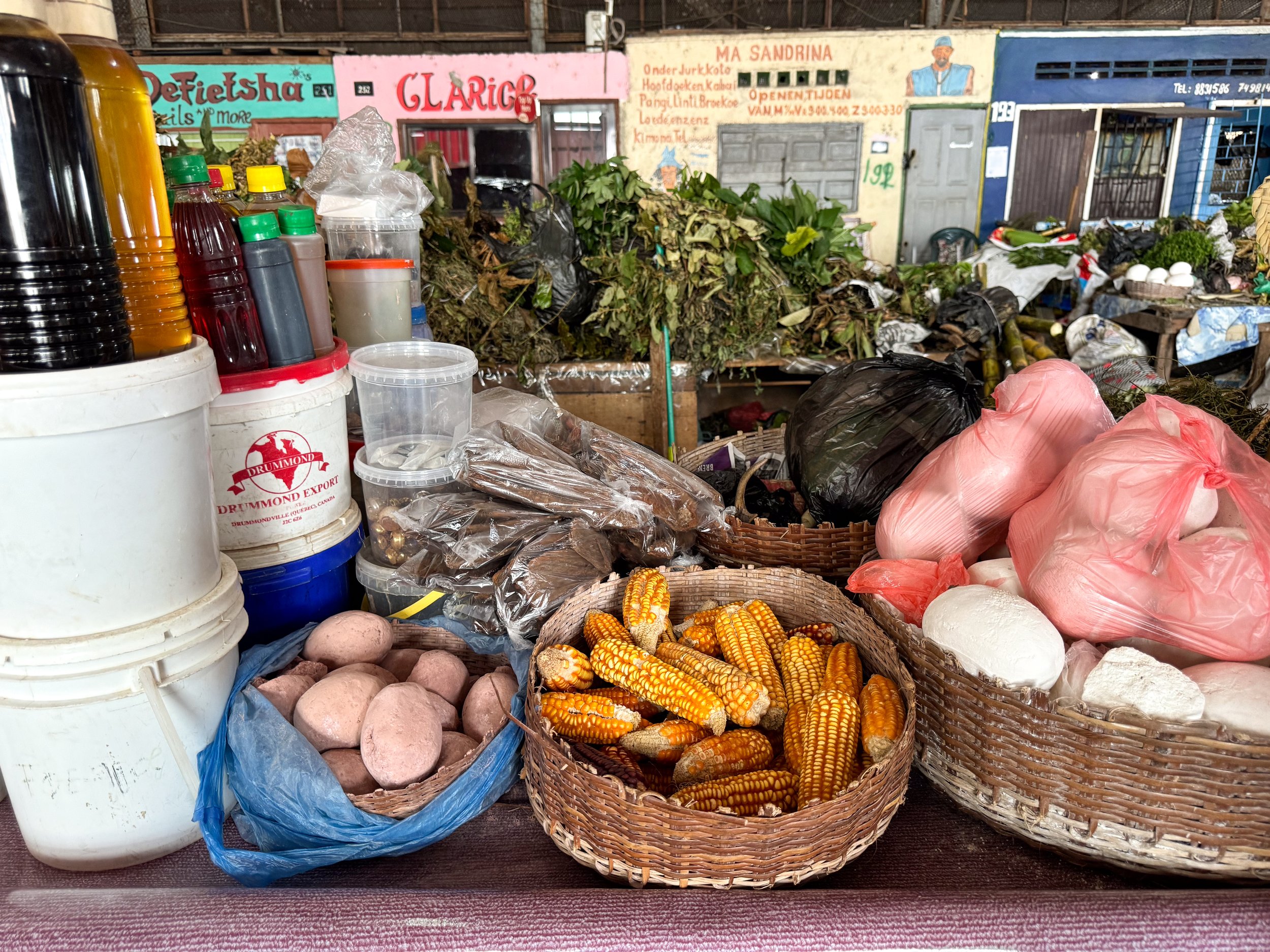
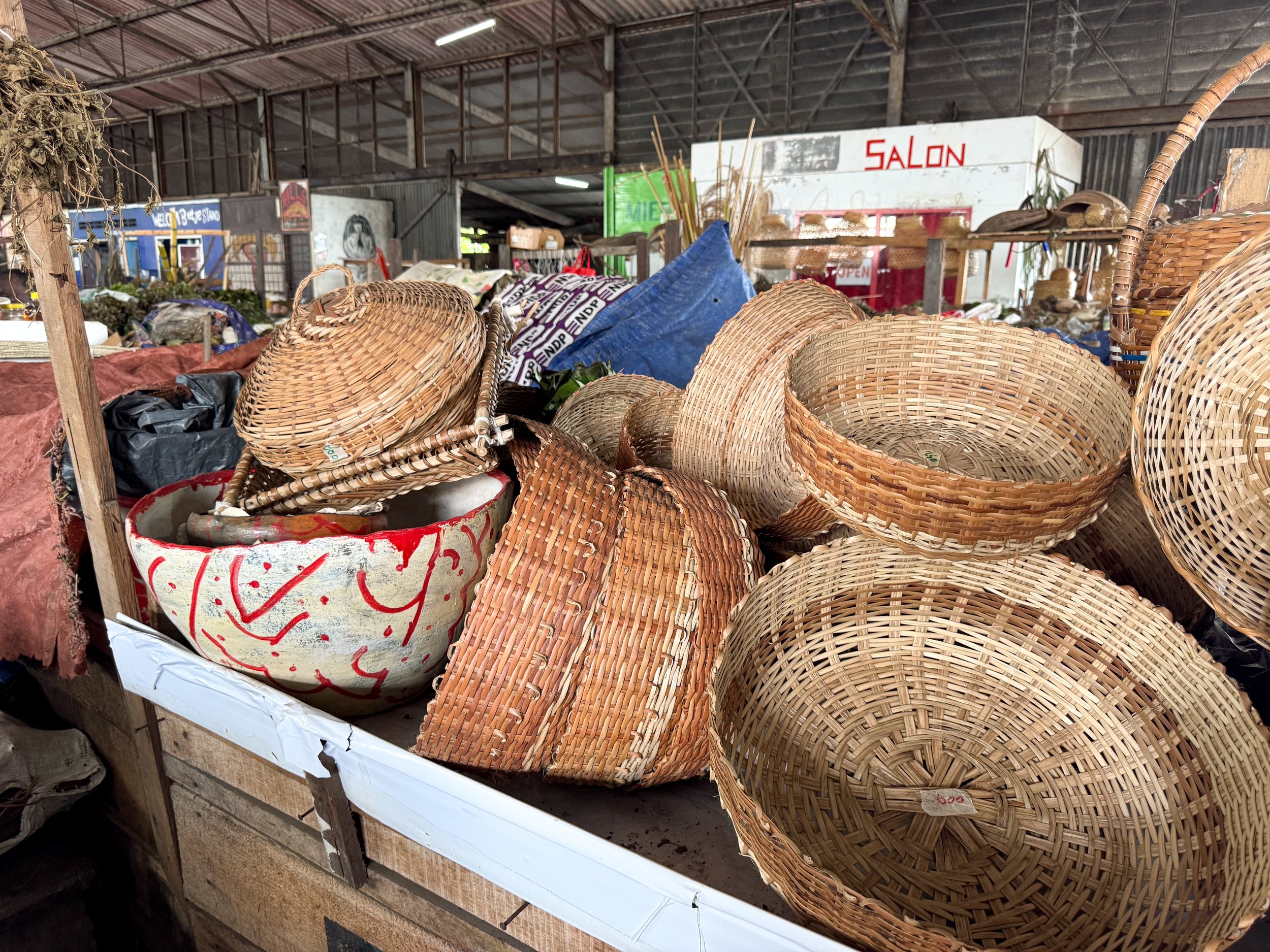
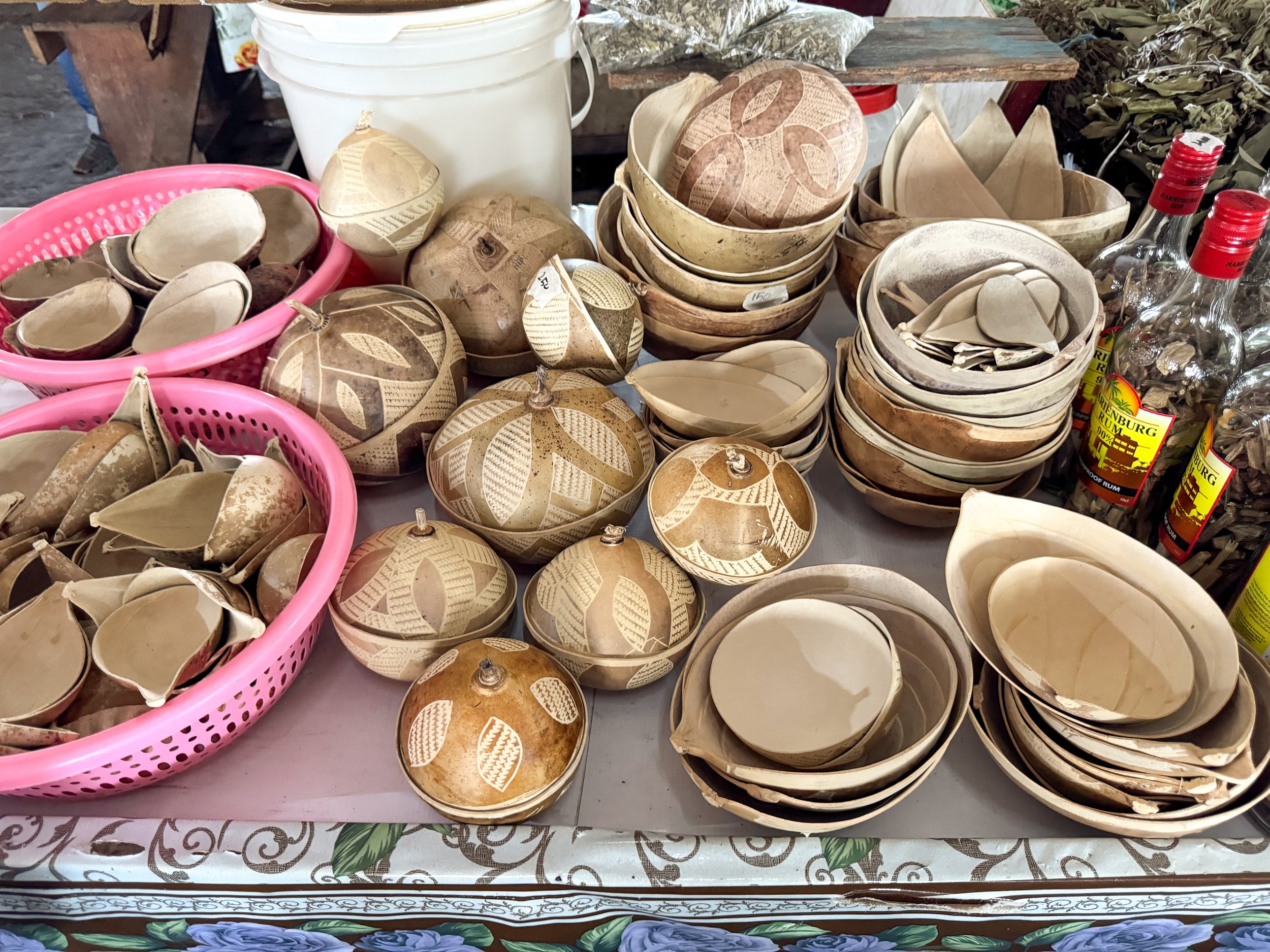
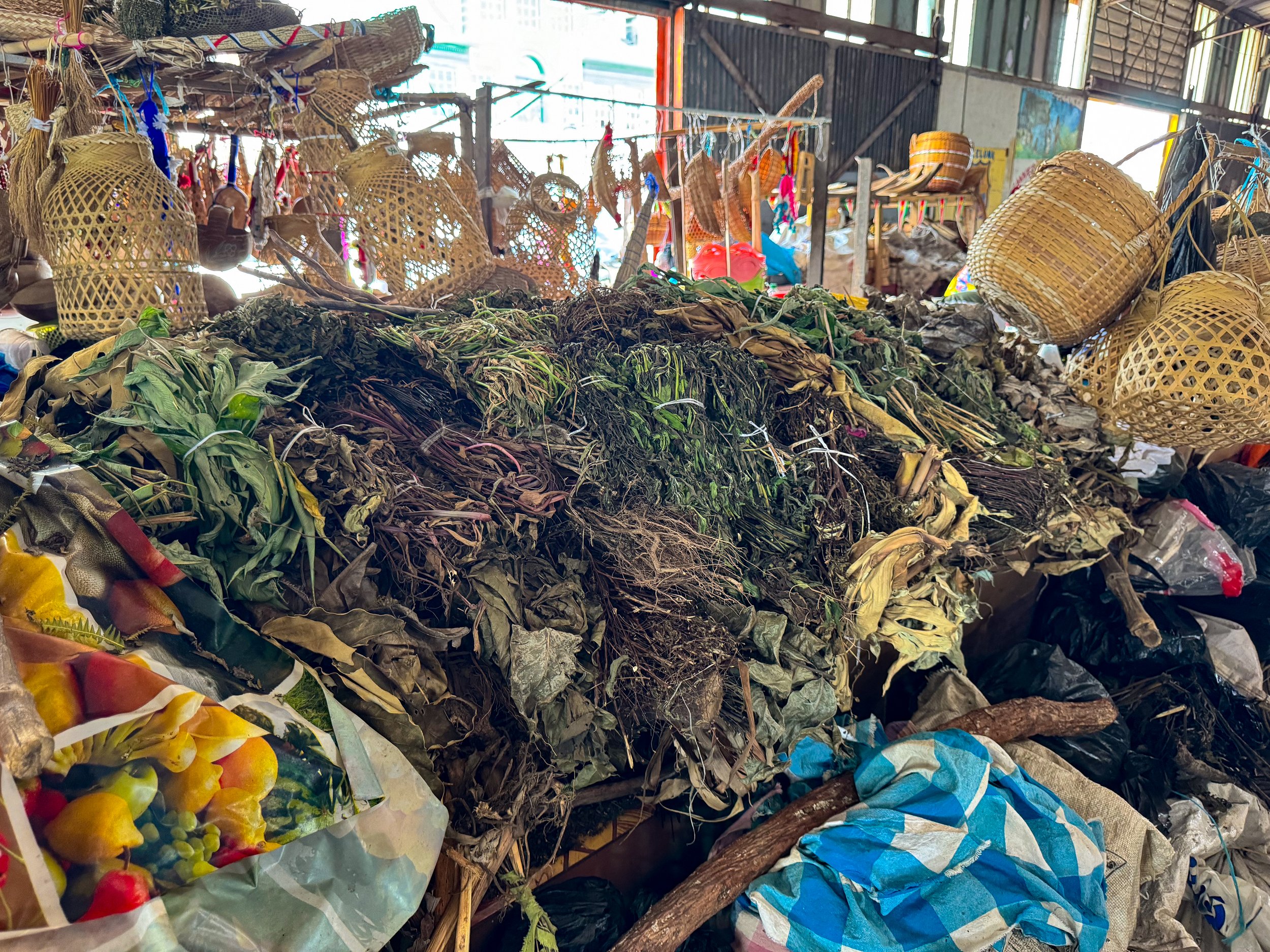

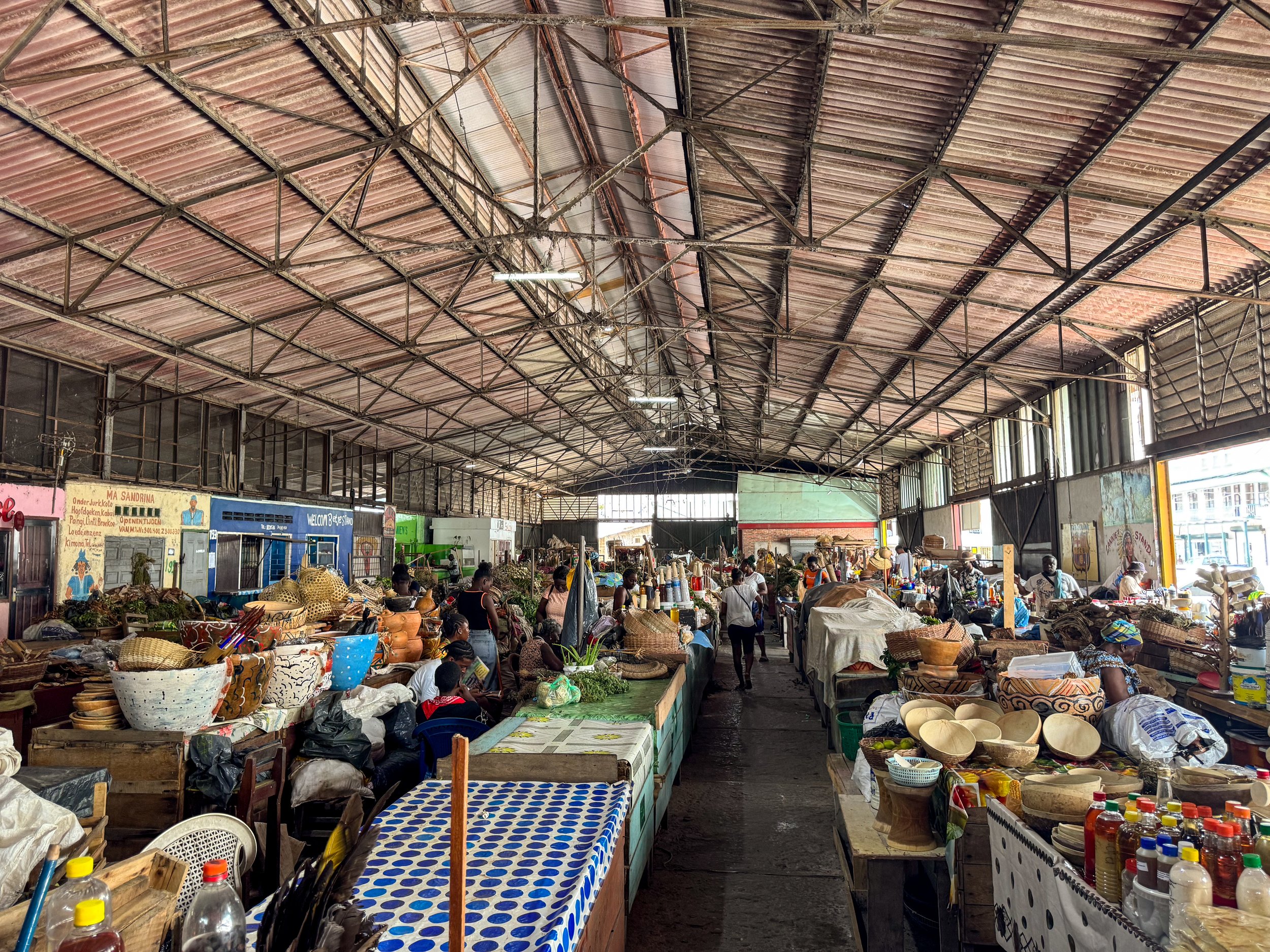

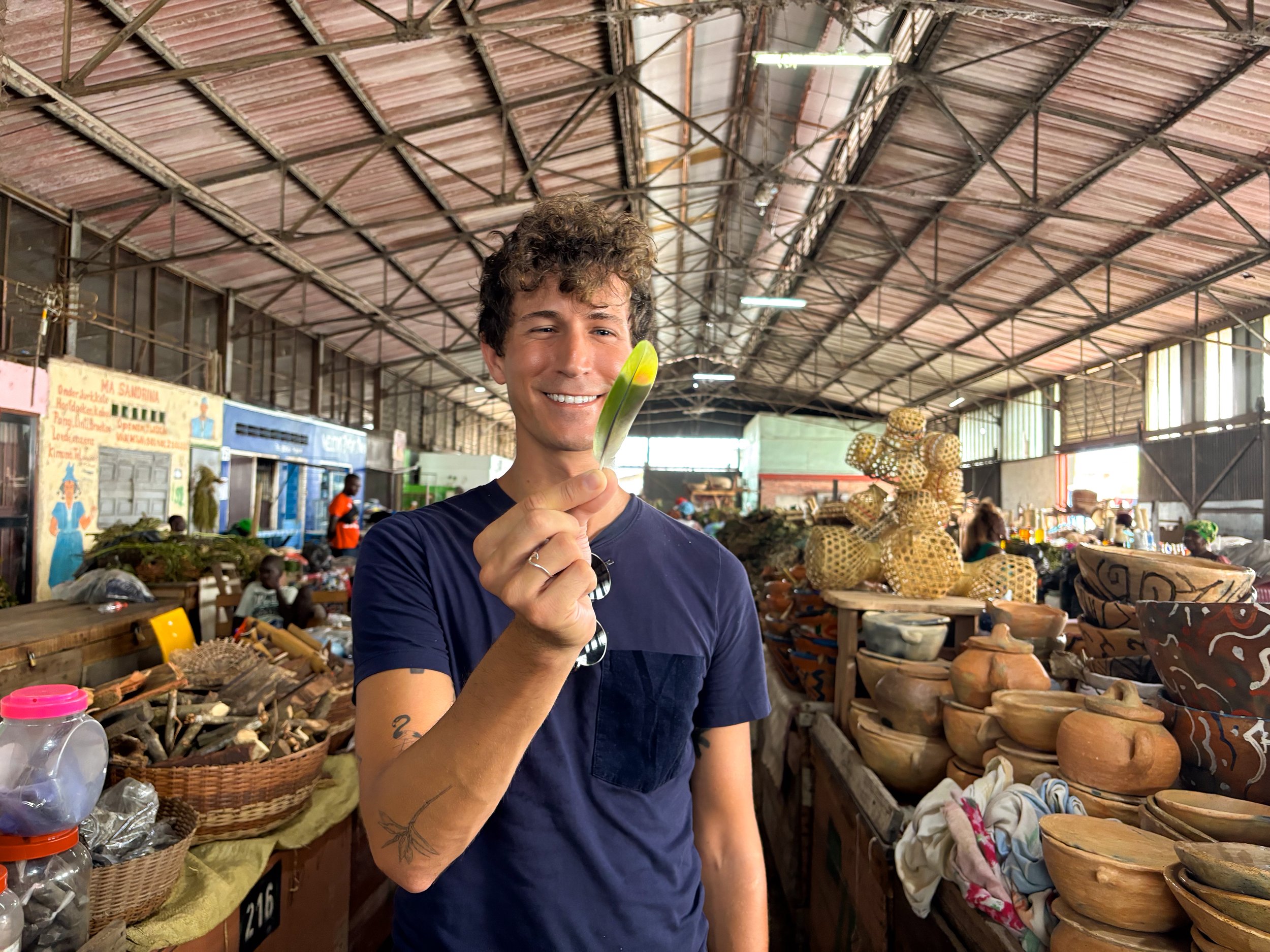


Markets
Maroon Market. A market with Maroon women selling organic and handmade items from the Surinamese Amazon. Across the tables of the dimly lit shed are jars with colorful feathers, stacked turtle shells, rams horns, large bunches of leaves used for washing with, oils for skin and hair care, pieces of bark and dried tree sap for burning as incense, wood and root used for medicinal purposes, cassava flower and spices. The women here are friendly and spoke with us about what several items were and how they’re used. Other vendors sell beautifully woven baskets, painted clay pots, bowls carved out of gourds and beaded necklaces.
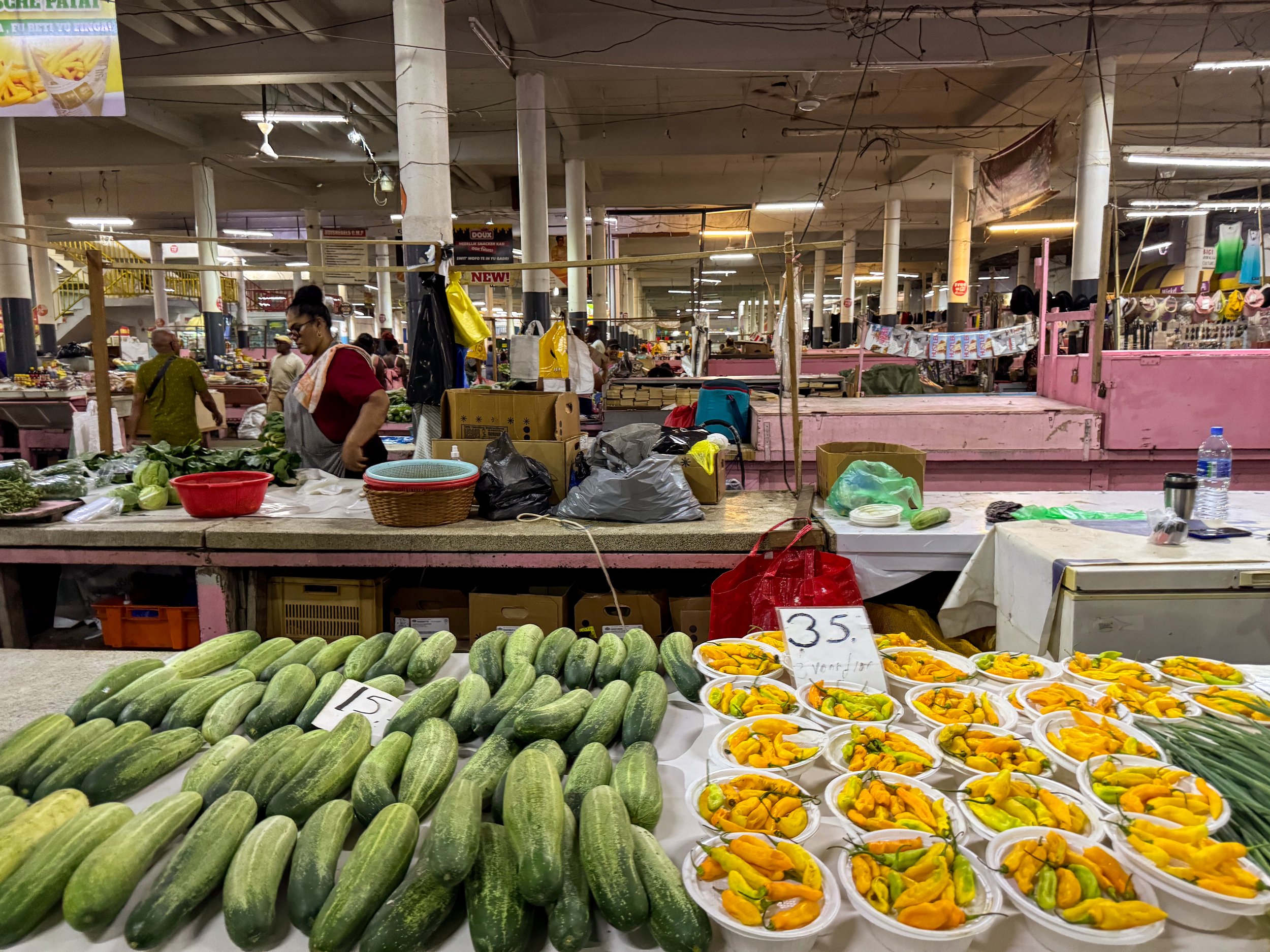
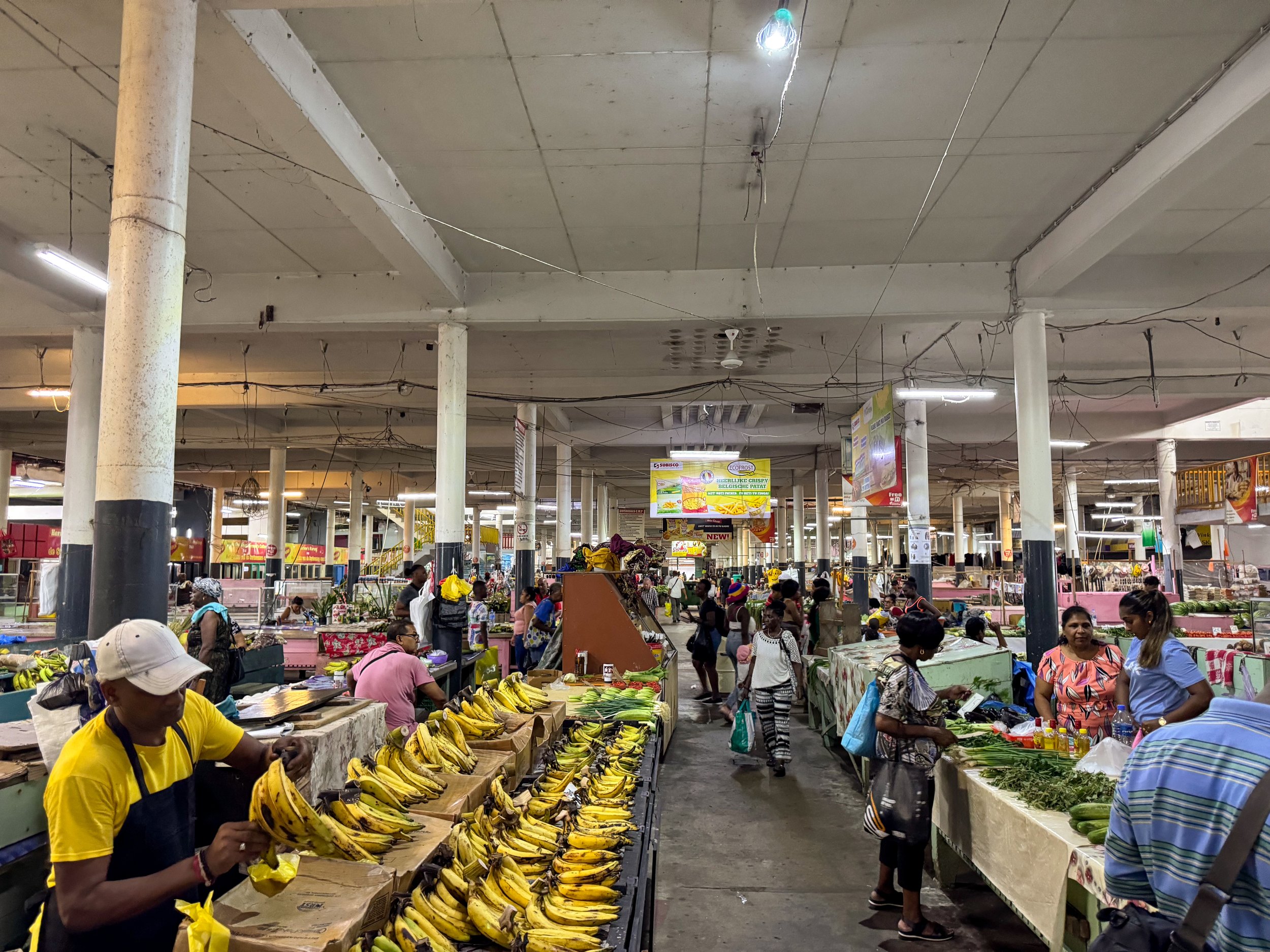
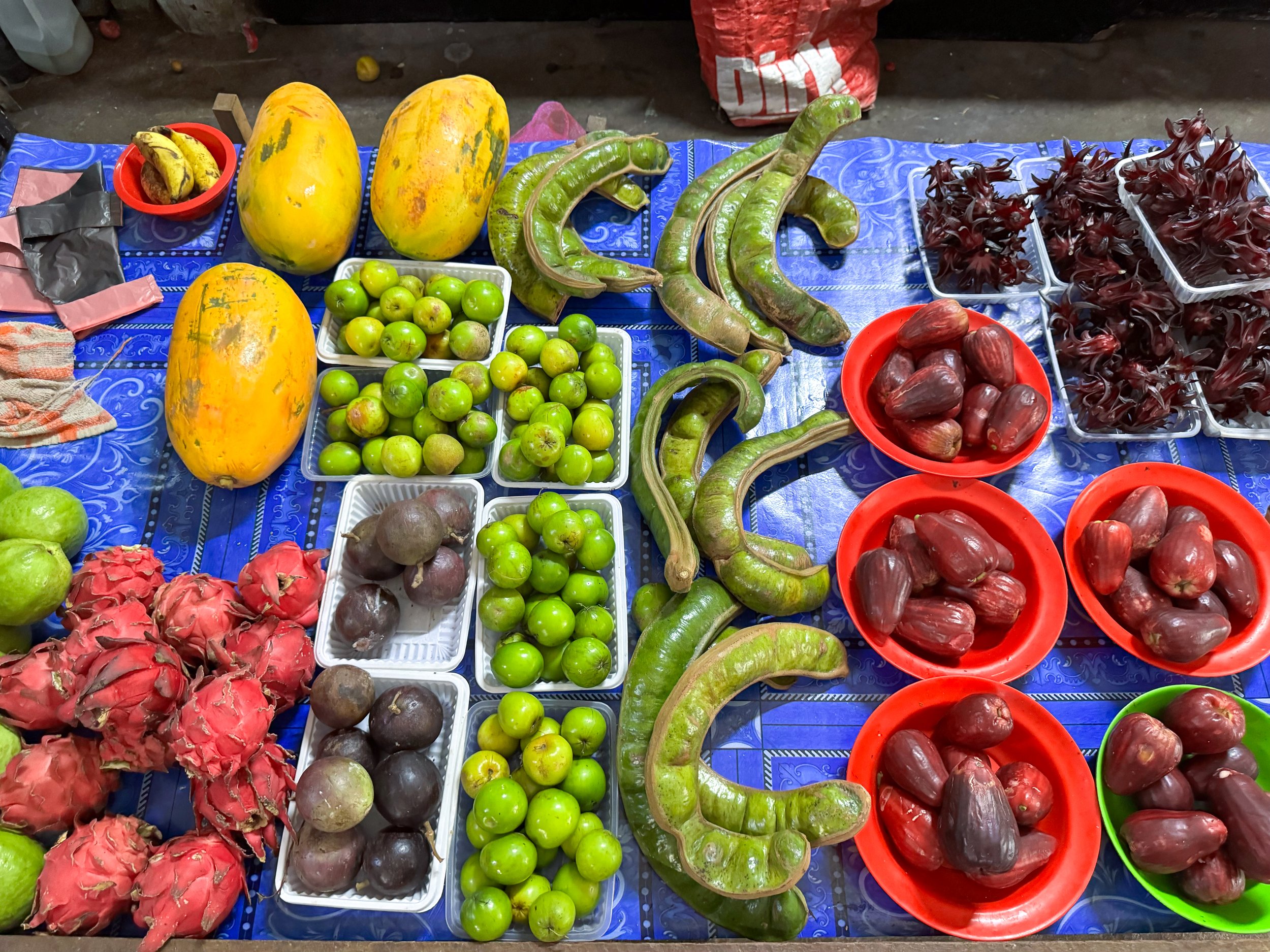
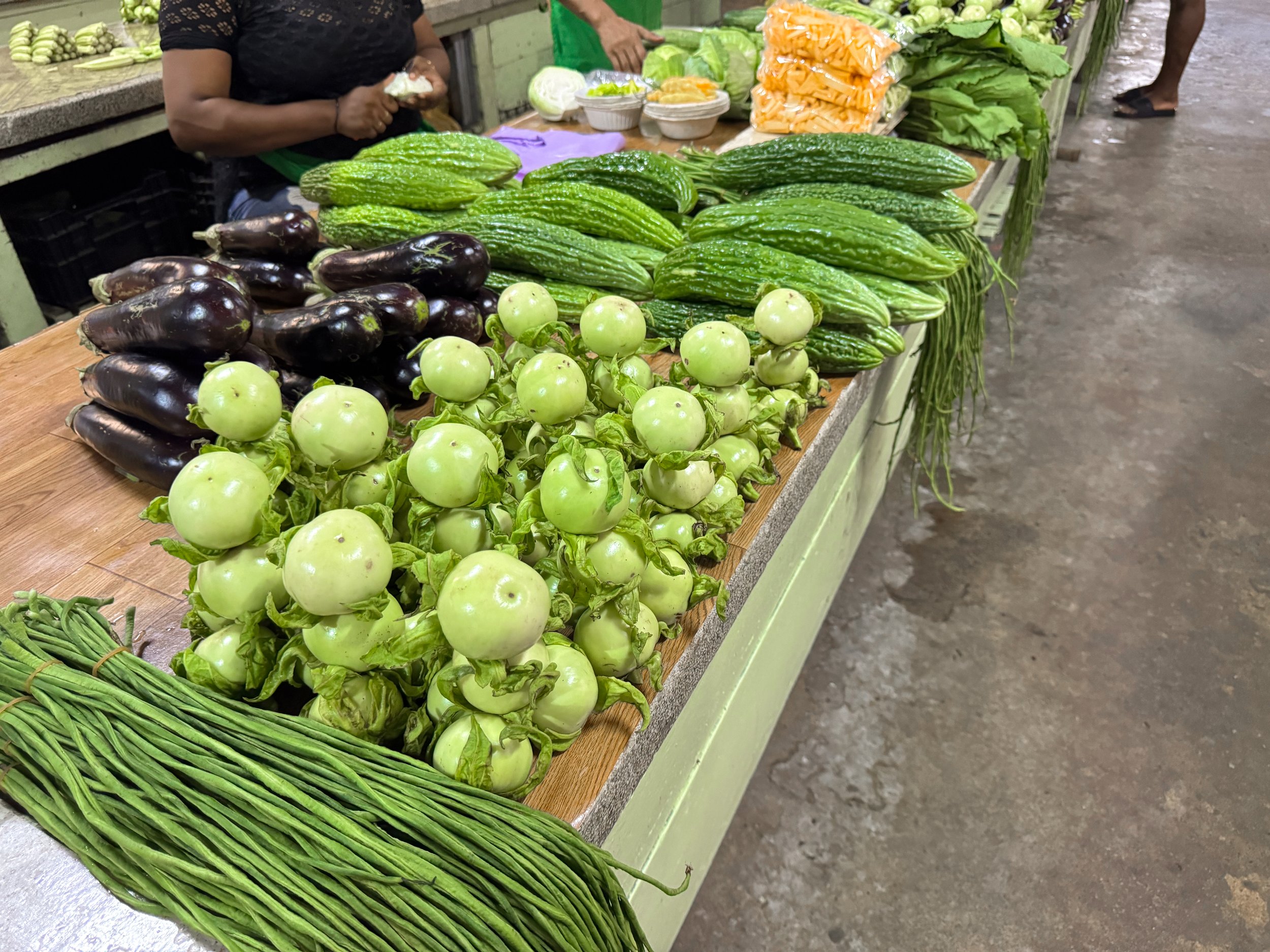
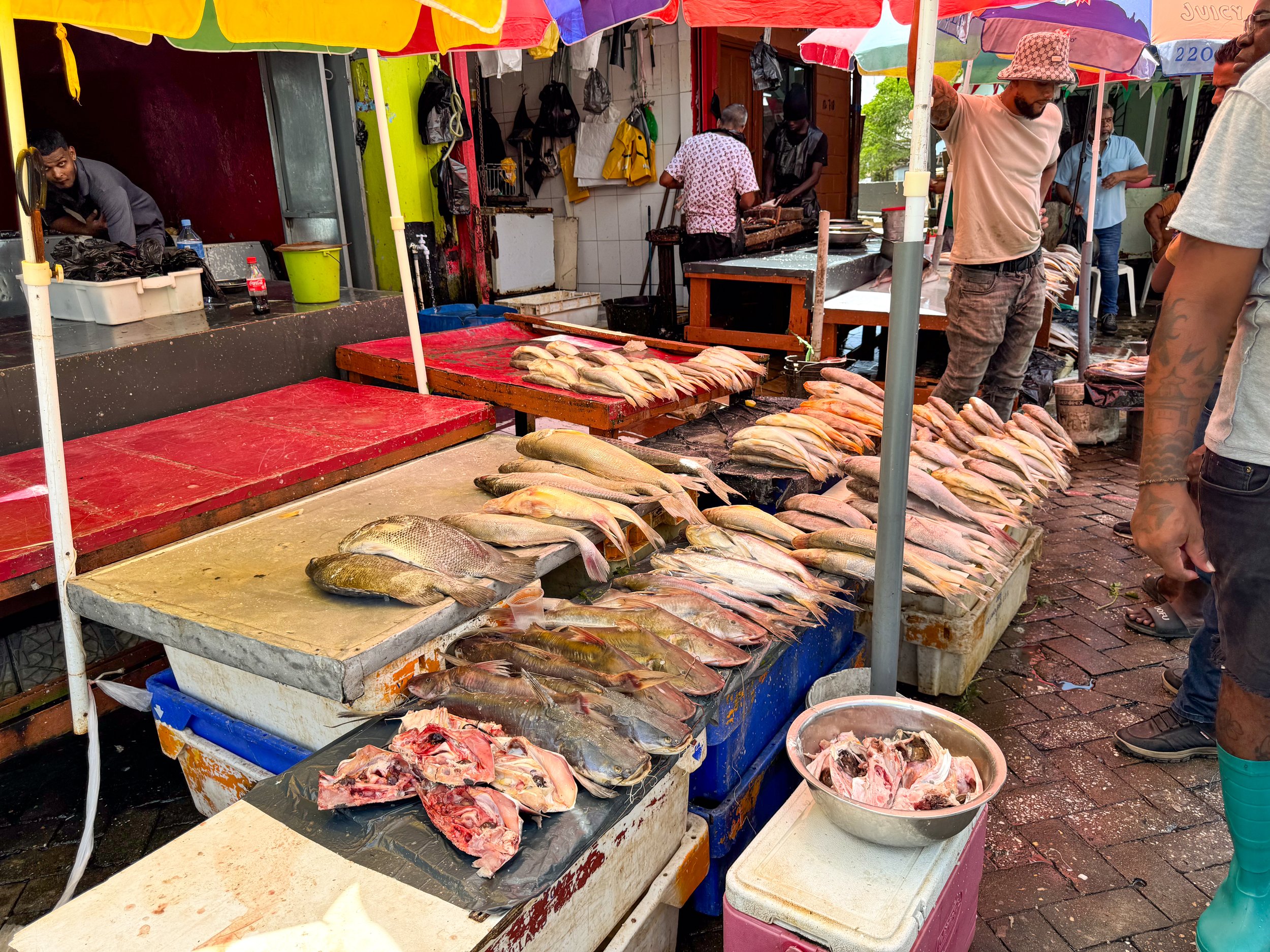
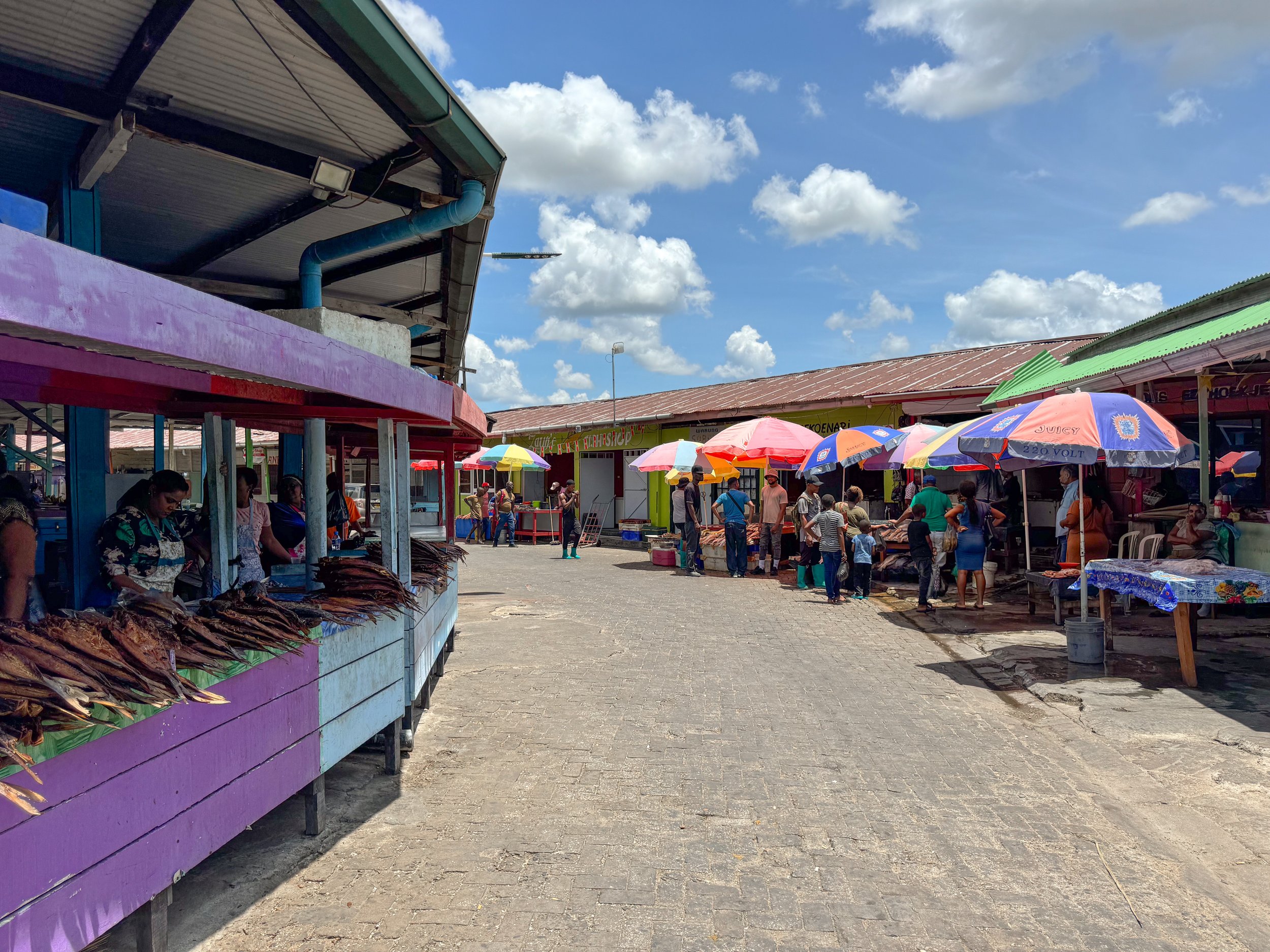
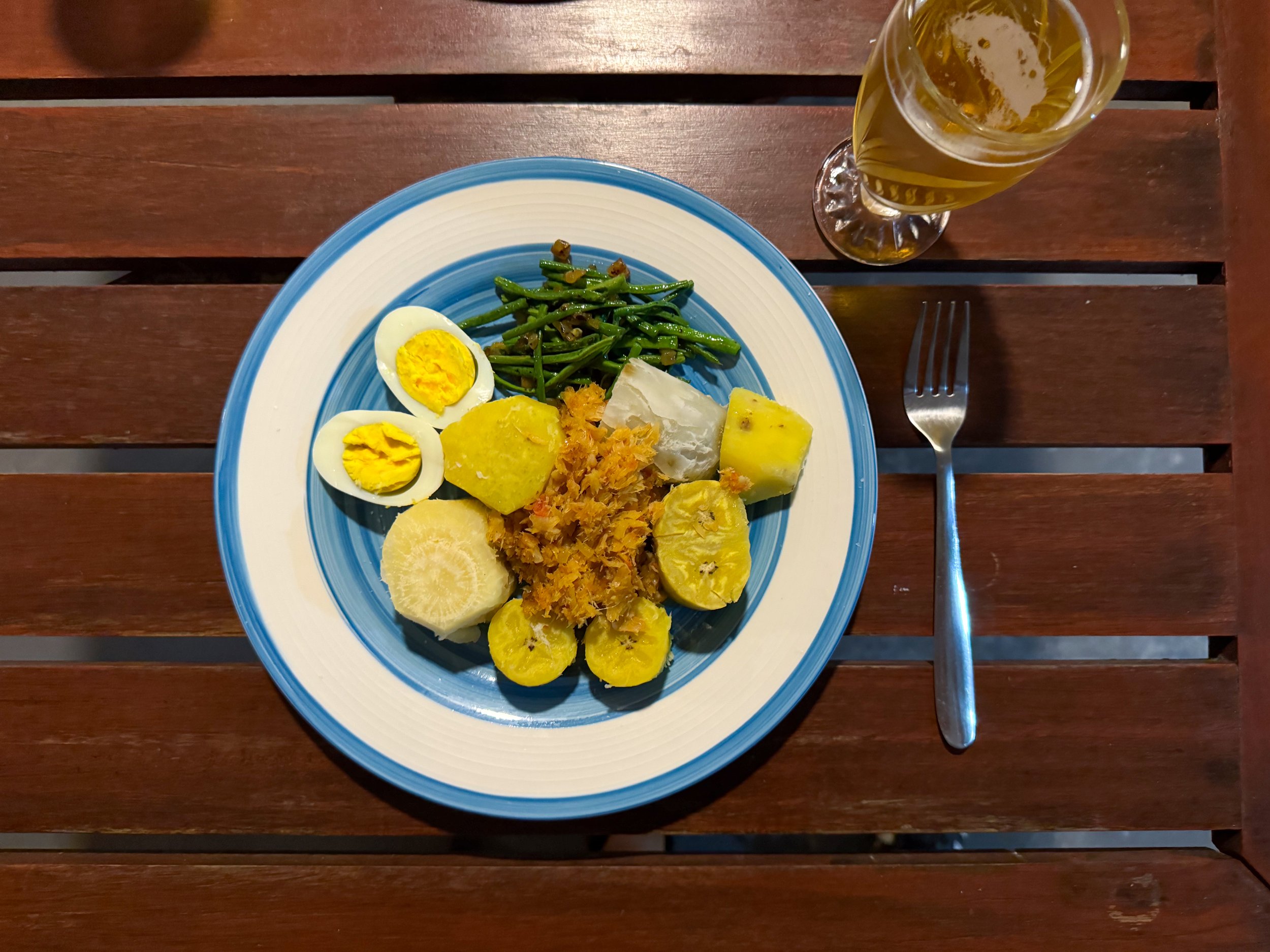
Central Market. A large market with vendors selling local produce, fish (fresh, smoked and salted), meats, live chicken, herbs, spices, oils, sauces, dried noodles, rices, cassava and plantain chips. We spent over an hour walking from table to table inspecting the exotic fruits, bunches of herbs and carefully stacked arrangements of vegetables before returning to buy groceries to prepare our own meals.
For breakfasts, we ate Amazon fruits. For one dinner, we cooked Heri Heri, Suriname’s national dish. The dish is made with an assortment of boiled vegetables including cassava, white sweet potato, potato, yellow plantain and green plantain served with fried salted cod, yardlong beans and a hard boiled egg.
Exotic Vegetables
Yardlong Beans. Very long thin strands of green bumpy beans.
Antroewa. A small round and green eggplant.
Sopropo. A bitter melon that has to be cooked. It looks like a bumpy cucumber.
White Sweet Potatoes. Small potatoes with a brown skin, white interior and sweet savory flavor.
Kaisoi. A large leafy green similar to spinach.
Exotic Fruits
Pommerak. A tasty deep pink pear shaped fruit with sweet and starchy flavor. Can bite right into it.
Rose Apple. A tiny pinkish red pear shaped fruit that tastes slightly sweet and floral. Can bite right into it.
Star Apple. A fruit similar in flavor to a lychee with the exterior of a passion fruit. Cut in half & spoon out the fruit.
Pomelo. A giant grapefruit with a light and refreshing flavor. The strands of fruit easily pull out of each slice.
Other more commonly known vegetables and fruits sold at the market are plantains, okra, turmeric, cassava, squash, oranges and watermelon.
Deserts
Boyo. A semi sweet cake with a gelatinous spongy texture made from cassava and coconut.
Fiadu. A sweet cake made with raisins, currants, almonds and citrus.
Drinks
Parbo Bier. A classic Pilsner brewed in Paramaribo.
Parbo Bier Chiller Lime. A refreshing local beer with flavors of lime and passion fruit.
Fruit Stands. There are colorful and fragrant fruit stands around the outer roads of Paramaribo. We stopped at one for a fresh coconut, mango and pineapple for breakfast.
Waka Pasi. An outdoor market along the canal behind the Palmentuin with cocktail bars, cafes, ice cream shops, souvenir stands, a tourist desk and vendors selling fried foods.
Where to Eat & Drink
Raja Ji. An Indian restaurant with a wide range of vegetarian dishes cooked in savory sauces and warm spices.
Souposo. A cafe with Surinamese soups. Try the Peanut Soup made from peanuts, plantain, spices and smoked fish. Or try the Saoto Soup, a savory vegetable soup with greens, spices, bean sprouts and ramen noodles.
Tangelo. A cafe with strong coffee, artesian pastries, fruit forward breakfast dishes and savory bites with Indian spices. Try the Aloo Gobhi Pita with spiced cauliflower, potato and chickpeas.
Sweetie Coffee Suriname. A cafe at the Waka Pasi market with shaded seating, coffee, water, beers and homemade cakes.
Coffee Mama. A cafe in a Dutch colonial house with a cozy backyard. Come here for the coffee, Surinamese, Caribbean and Brazilian snacks, breakfast and lunch dishes.
The Surinamese Amazon
With its lush jungles, flowing by rivers and immense biodiversity, Suriname resides firmly in the Amazon Basin with over 90% of its landmass covered by rainforest. We traveled into this region and spent 4 days at the Anaula Nature Reserve.
Anaula Nature Reserve
Anaula is an eco-resort on an island in the Suriname River with jungle bungalows, nature trails, natural river pools, cultural activities and prepared local dishes. We spent our time relaxing in nature, exploring the Amazon and experiencing the local culture through tours and cuisine.
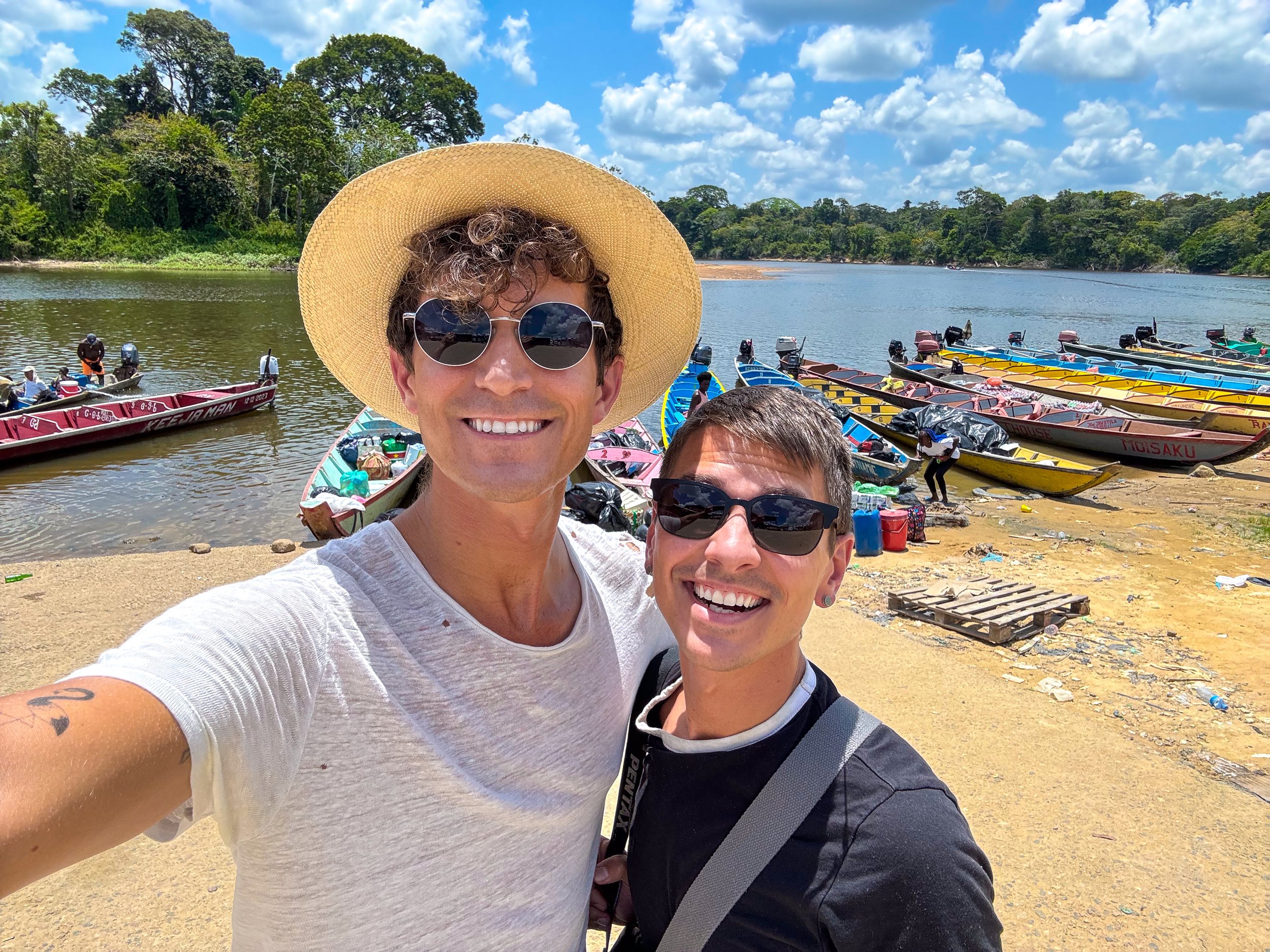
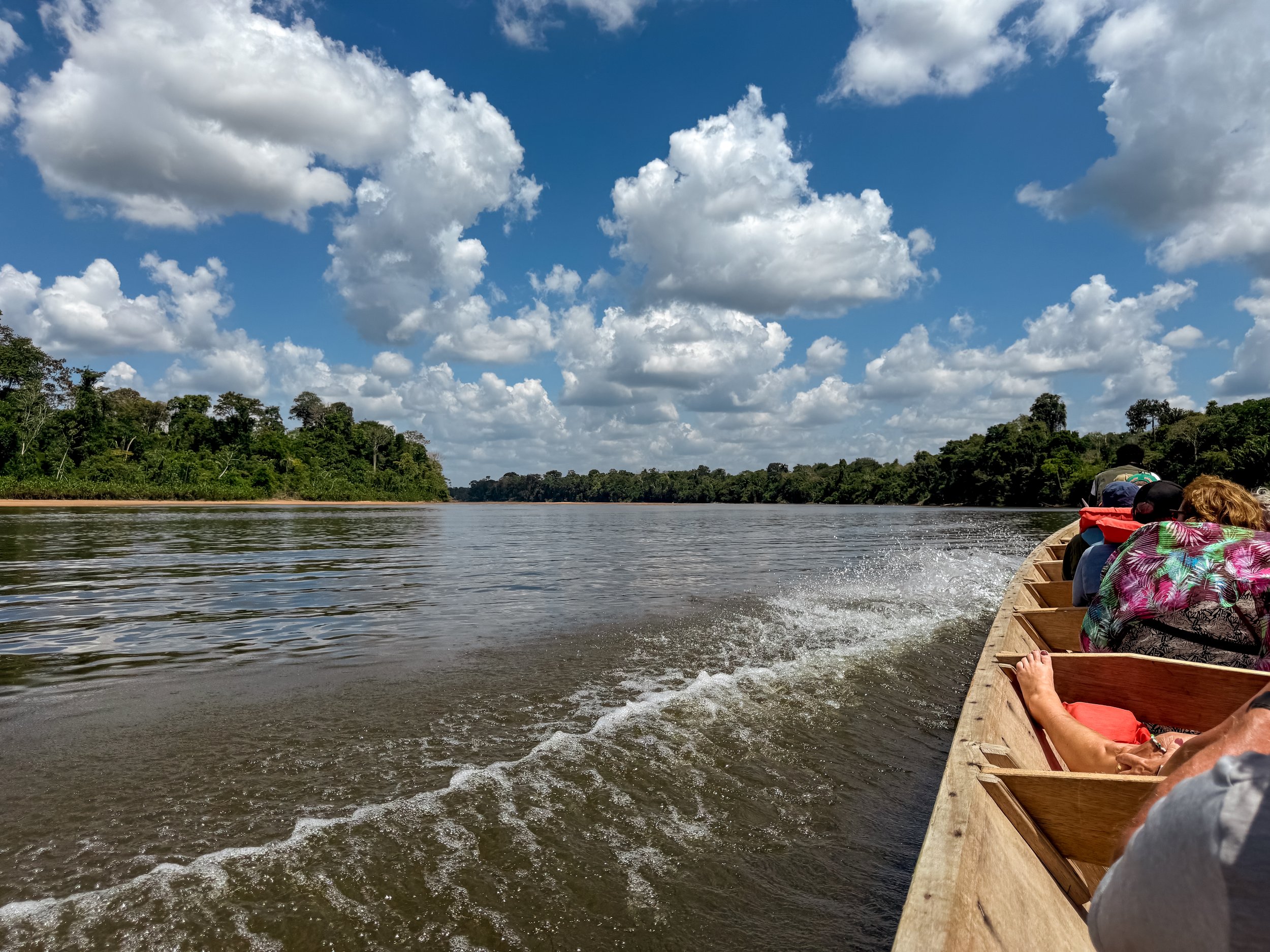
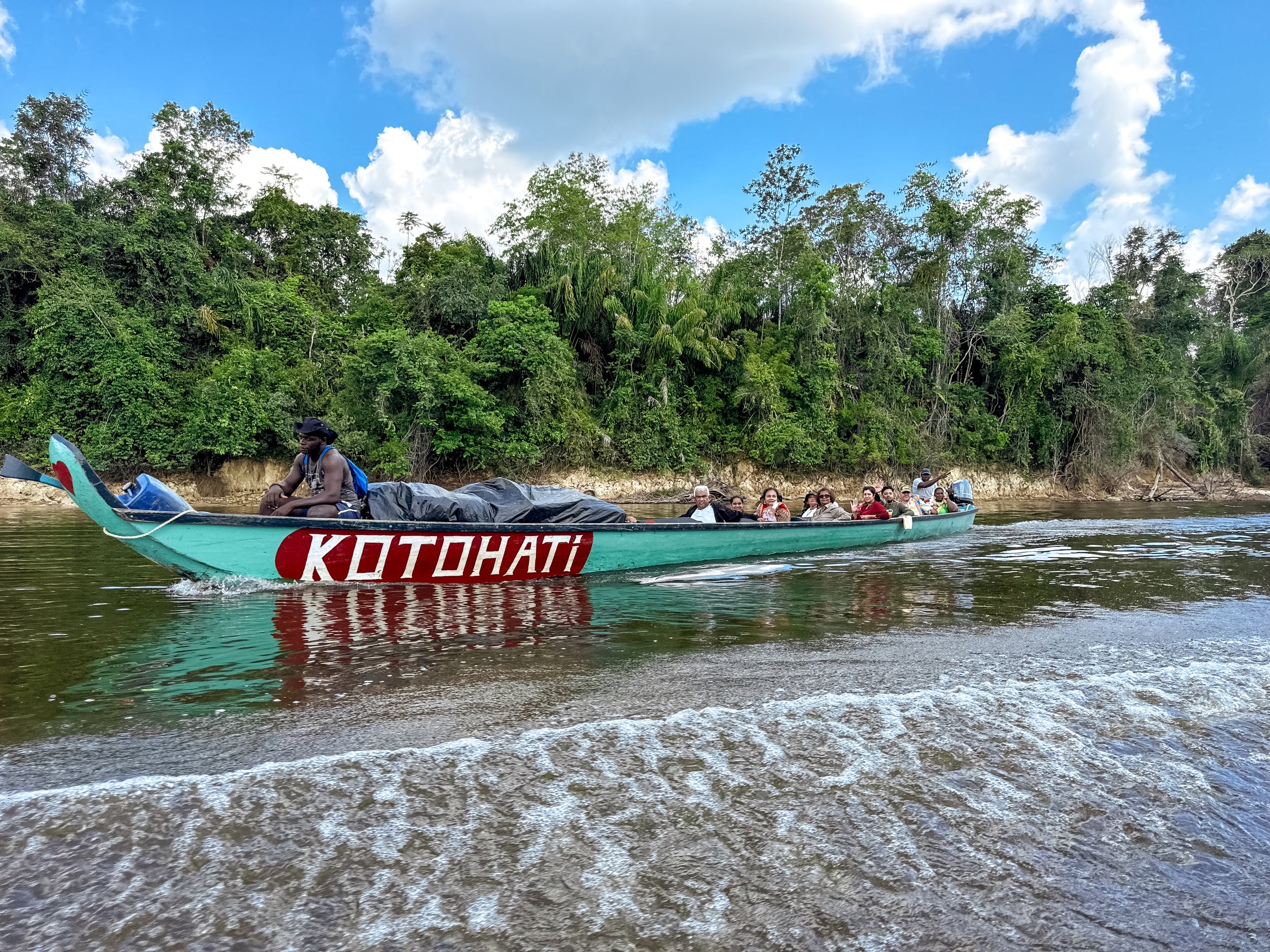
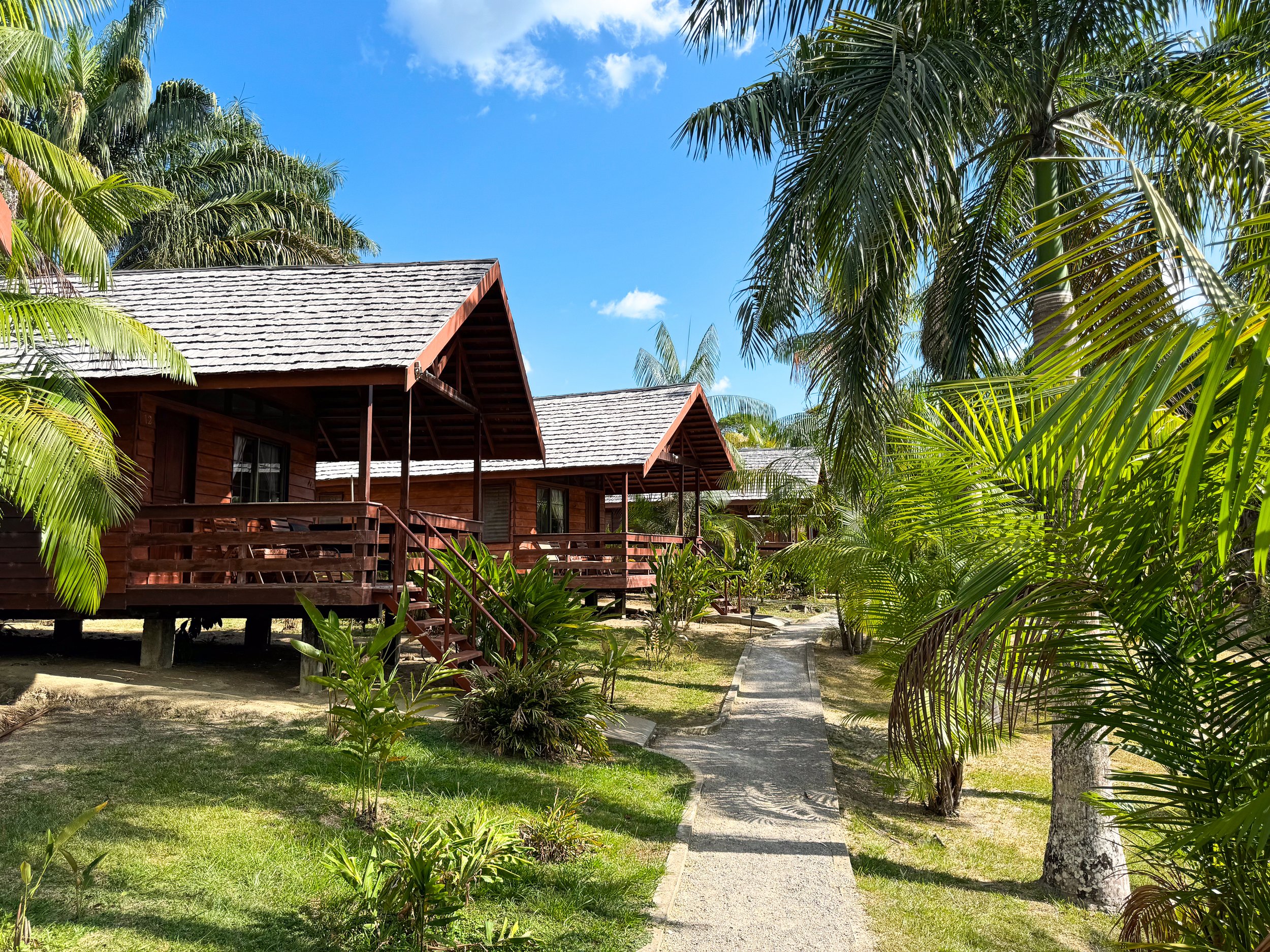
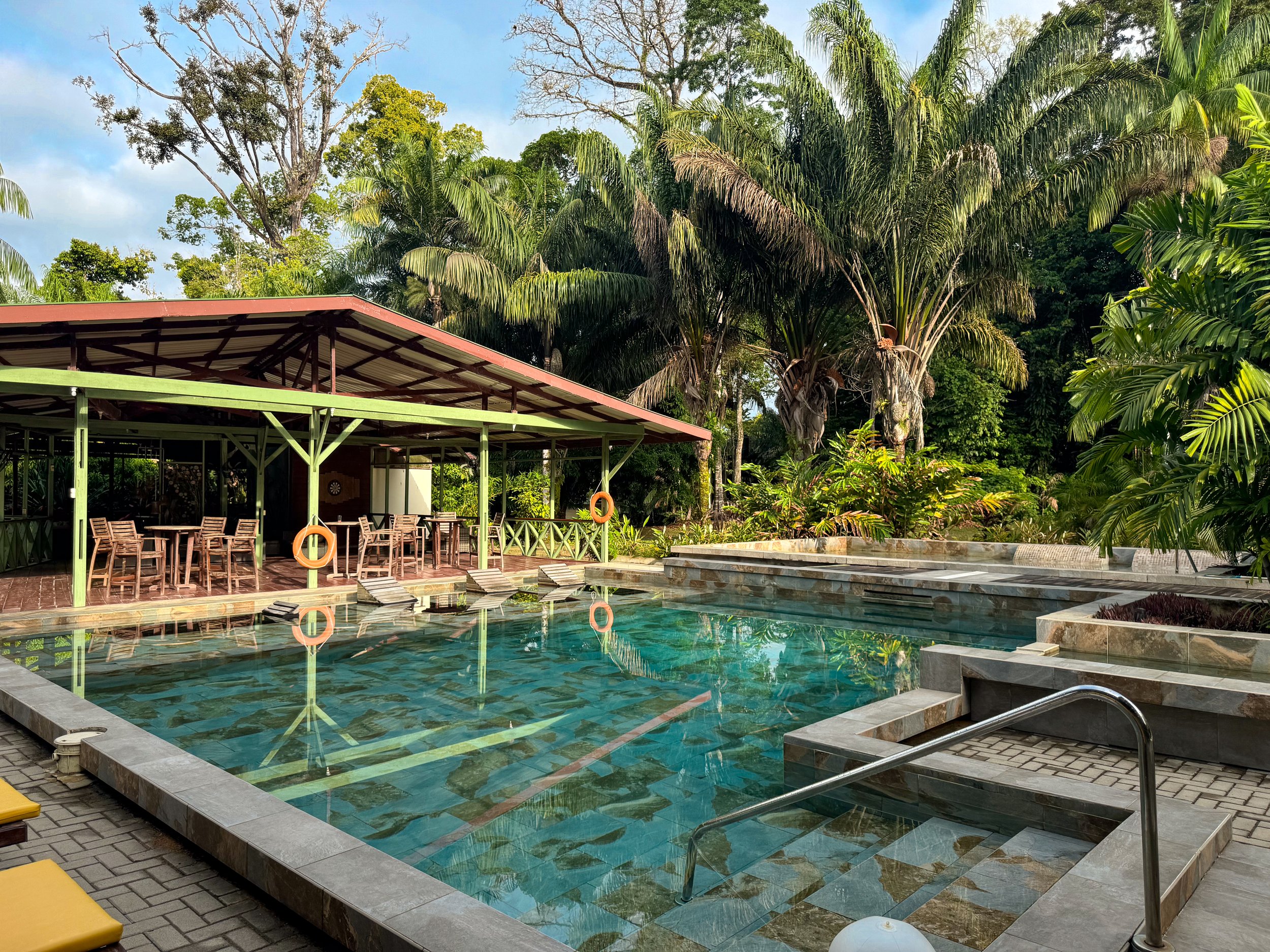
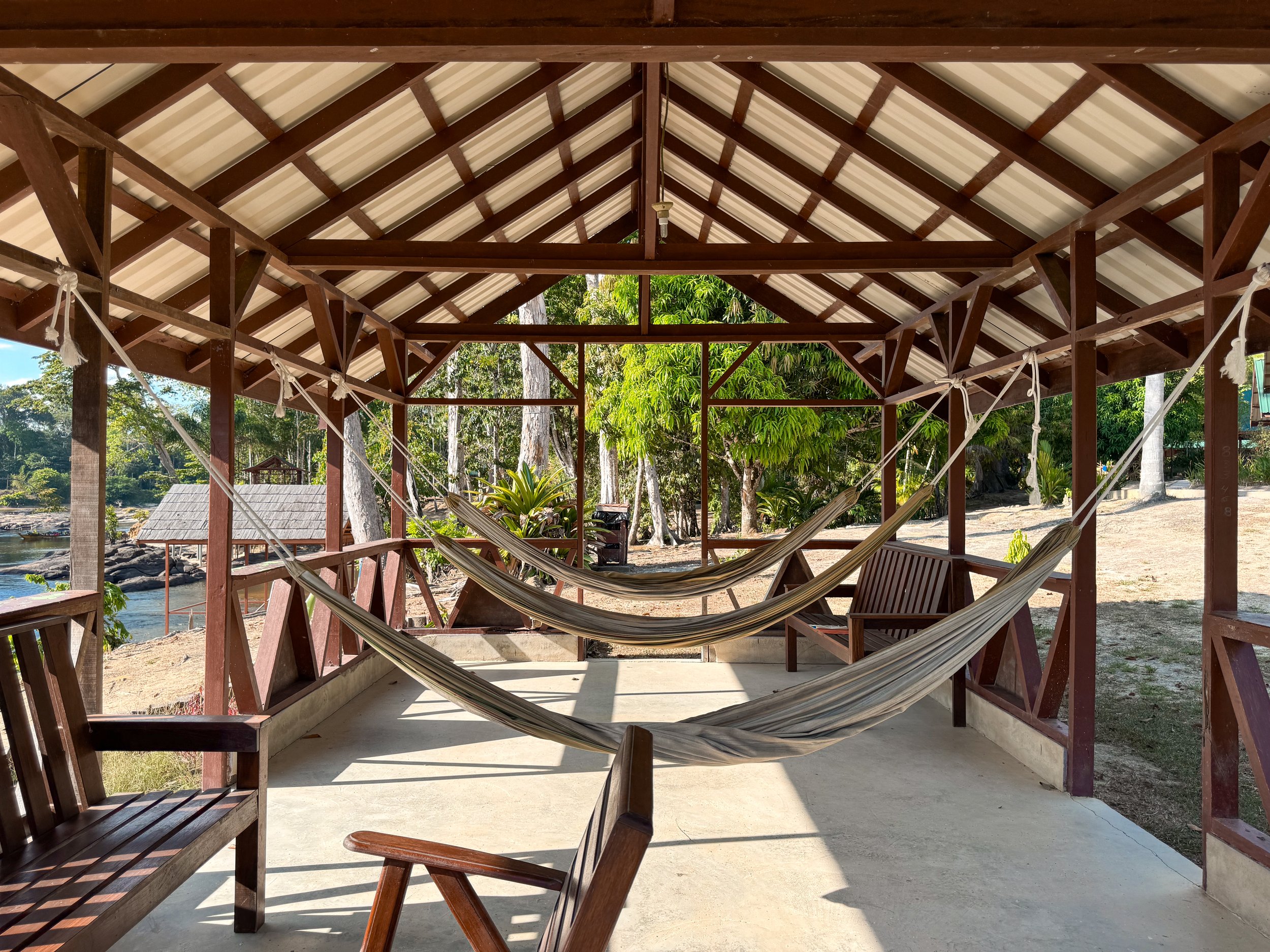
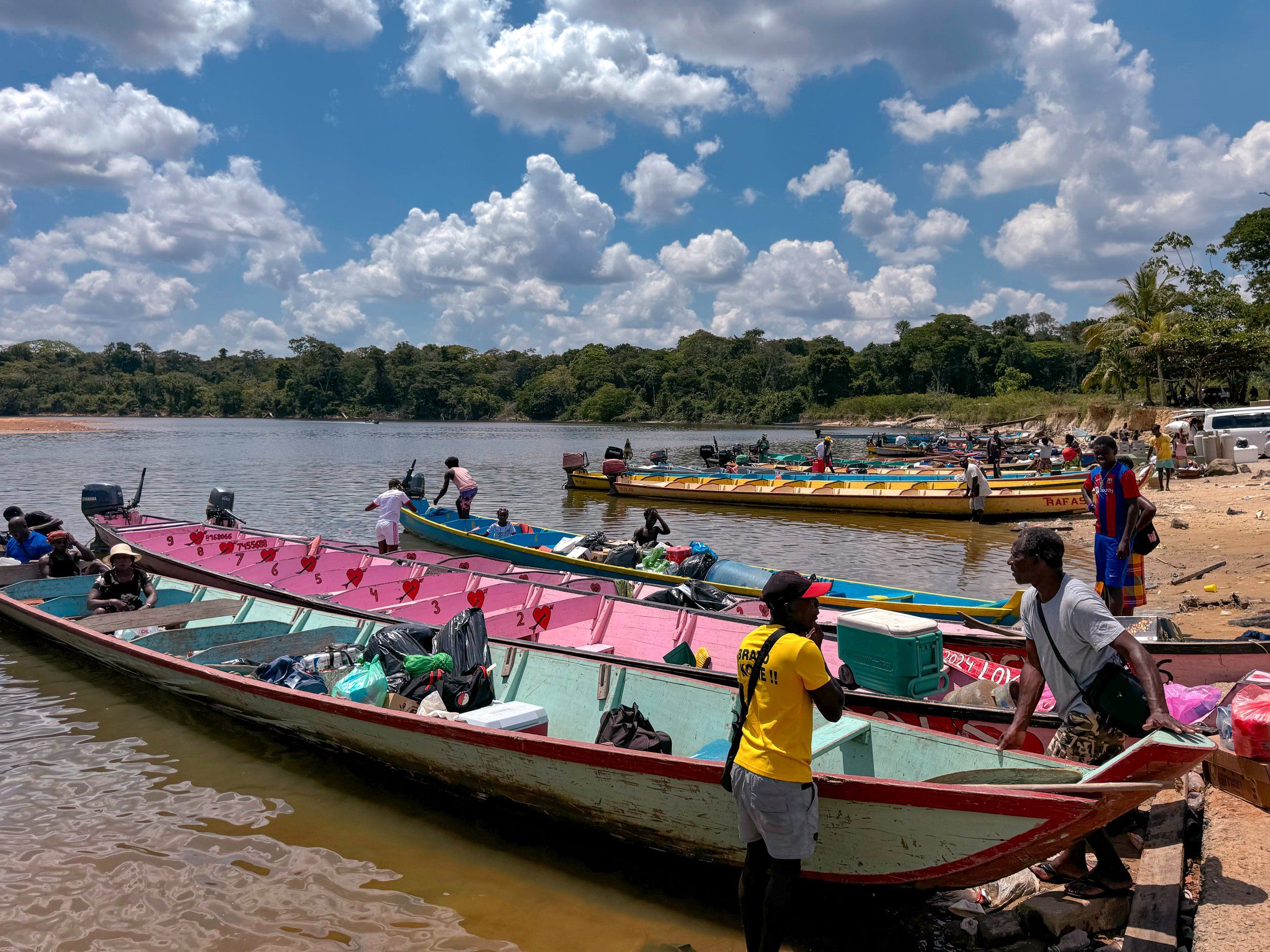
Day One
Day one was all about the journey and exploring the eco resort.
Getting Here
From Paramaribo, we took a 4 hour bus ride towards the interior of the country until reaching the port of Atjoni on the Suriname River. At this point, the only method of transportation further into the country is by motorized dugout canoe.
As we waited for our captain, guides tossed our bags onto a canoe ferrying everything from luggage, bulk groceries, small appliances, large propane tanks and corrugated metal. Once on the river, we glided through the brown water and looked upon the lush tree lined banks, passing several Maroon villages, locals swimming in natural river pools and washing clothes. The captain skillfully weaved the long canoe past rocks, sand bars and oncoming boats.
Towards the end of the journey, we passed through The Jaw Jaw Rapids, a notoriously turbulent section of the river. The captain sped the boat up the rapids through a narrow passageway where we hit and bounced off a rock but were redirected by several men waiting to steer us back on course. Once successfully passing through, the others re-boarded the boat and we continued the journey, docking at Anaula after a total 1 hour and 15 min canoe ride.
Arrival at Anaula
The resort has beautiful wooden bungalows and open air amenities like a dining hall where meals are served, a lobby with wooden lounge furniture, a relaxing outdoor pool and river overlooks with hammocks.
The beautiful property is built on an island, surrounded by lush Amazonian trees and views of the rapids. We used down time to wade in the surprisingly warm shallow river pools, bird watch and stargaze upon the Milky Way. In the middle of the night a strong rainstorm provided white noise as we drifted asleep.
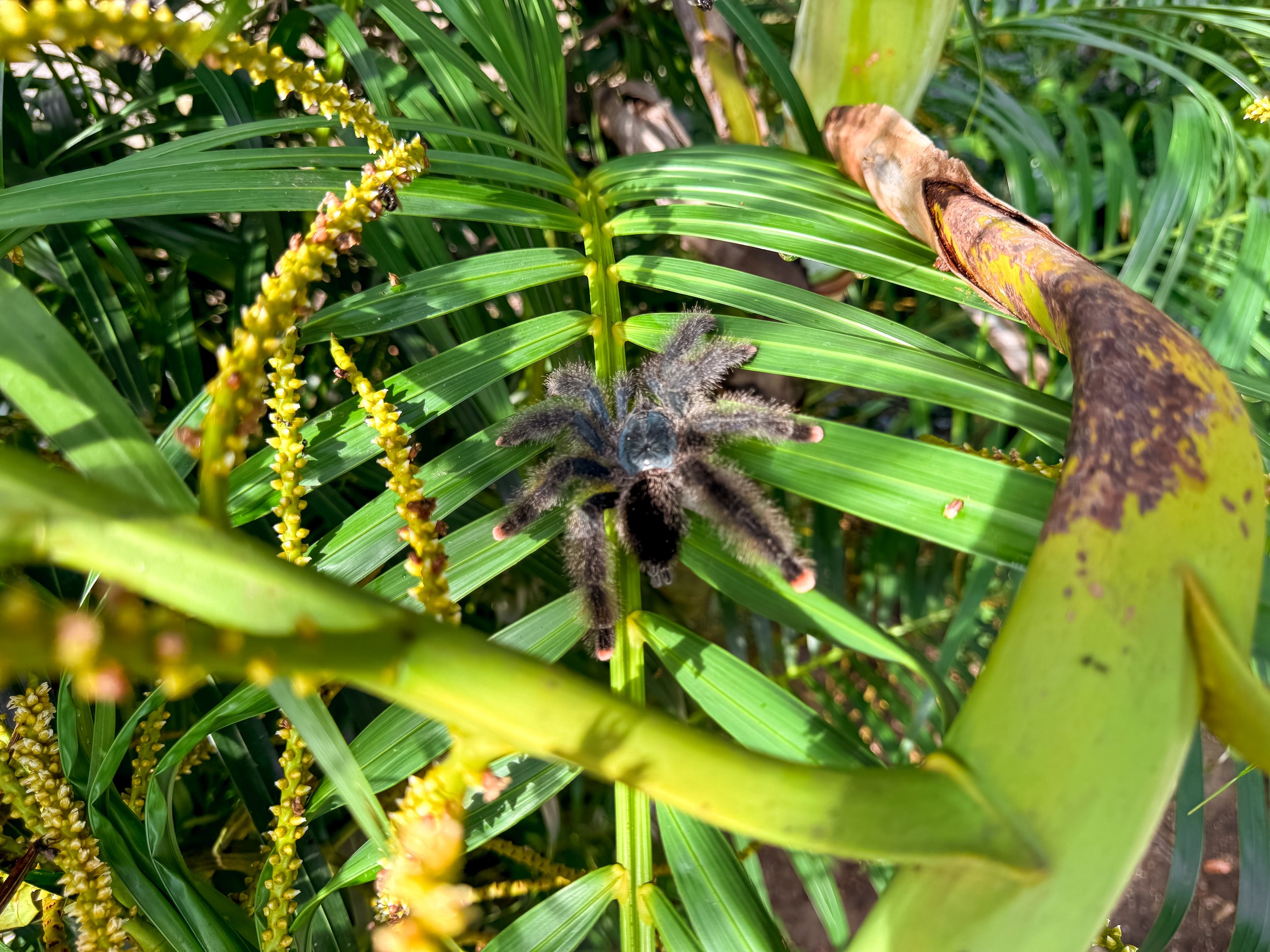
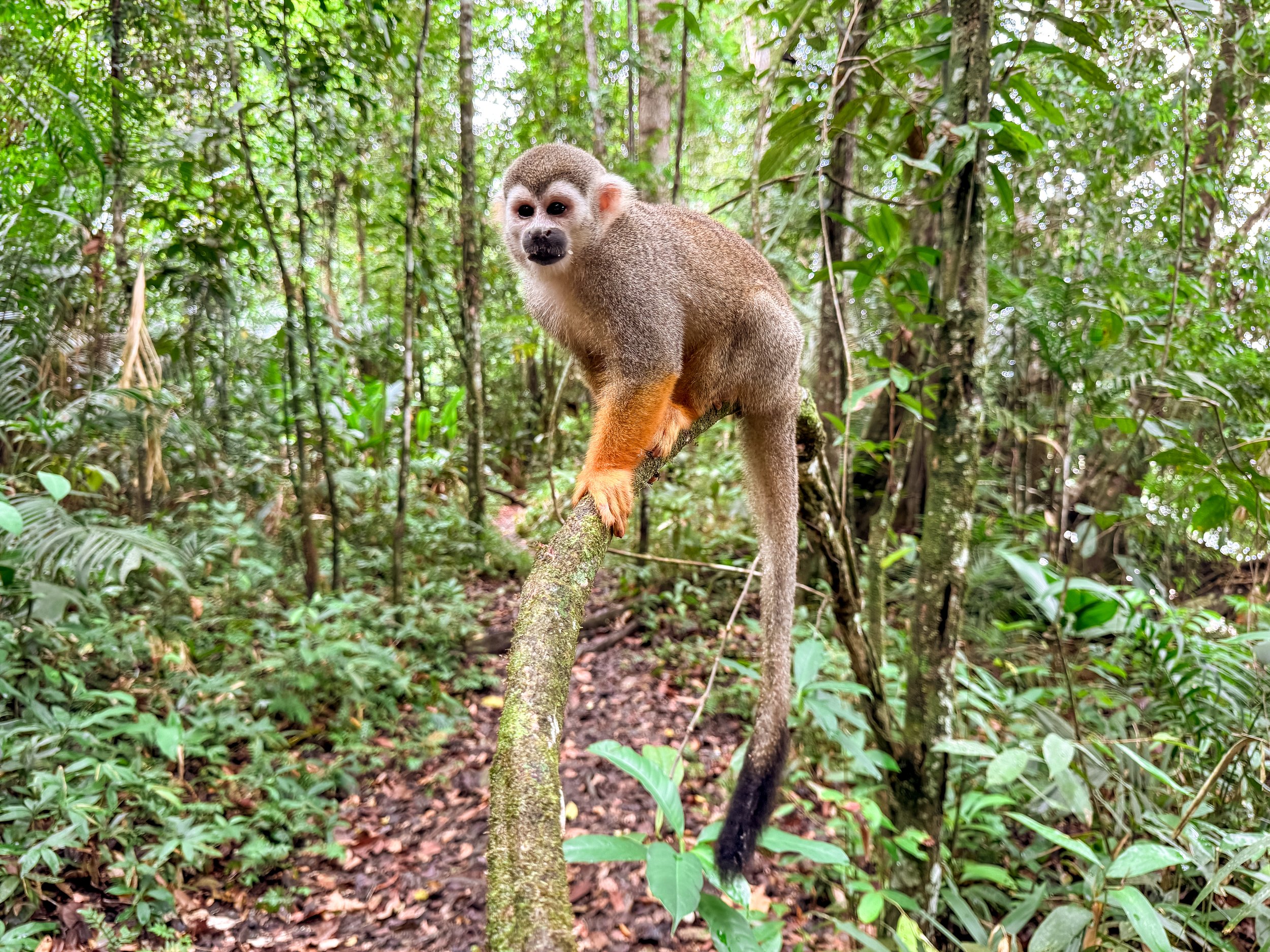
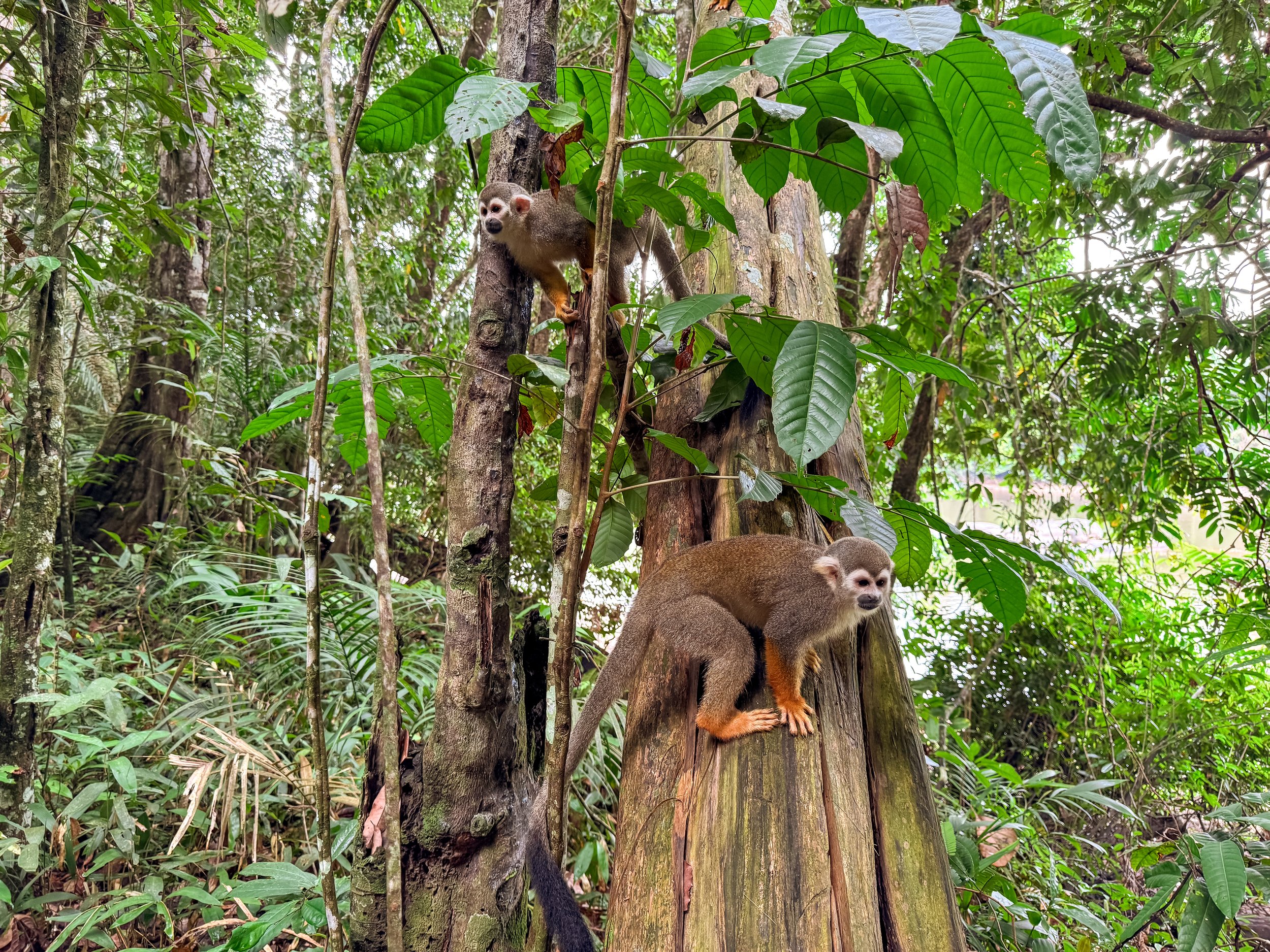
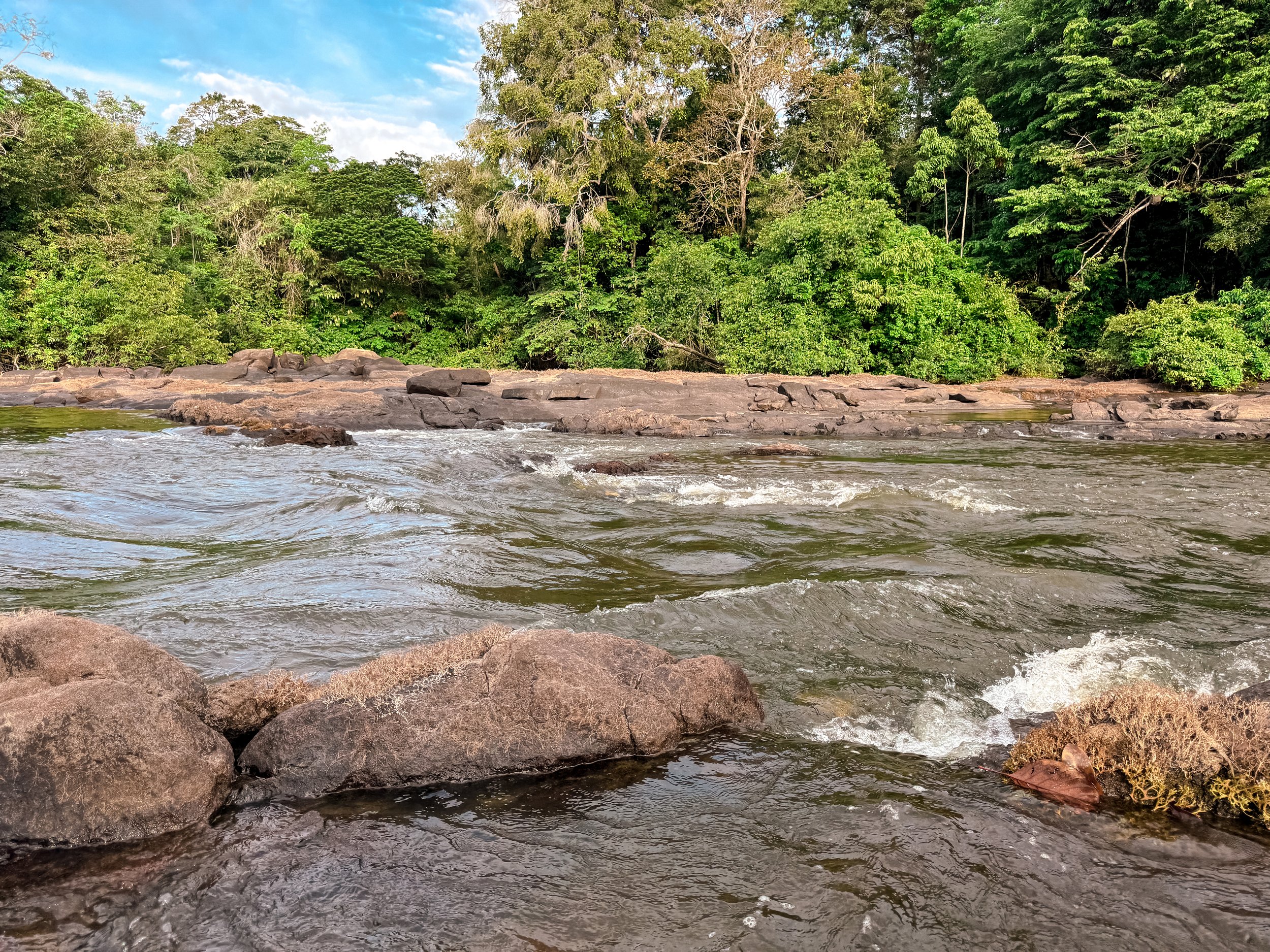
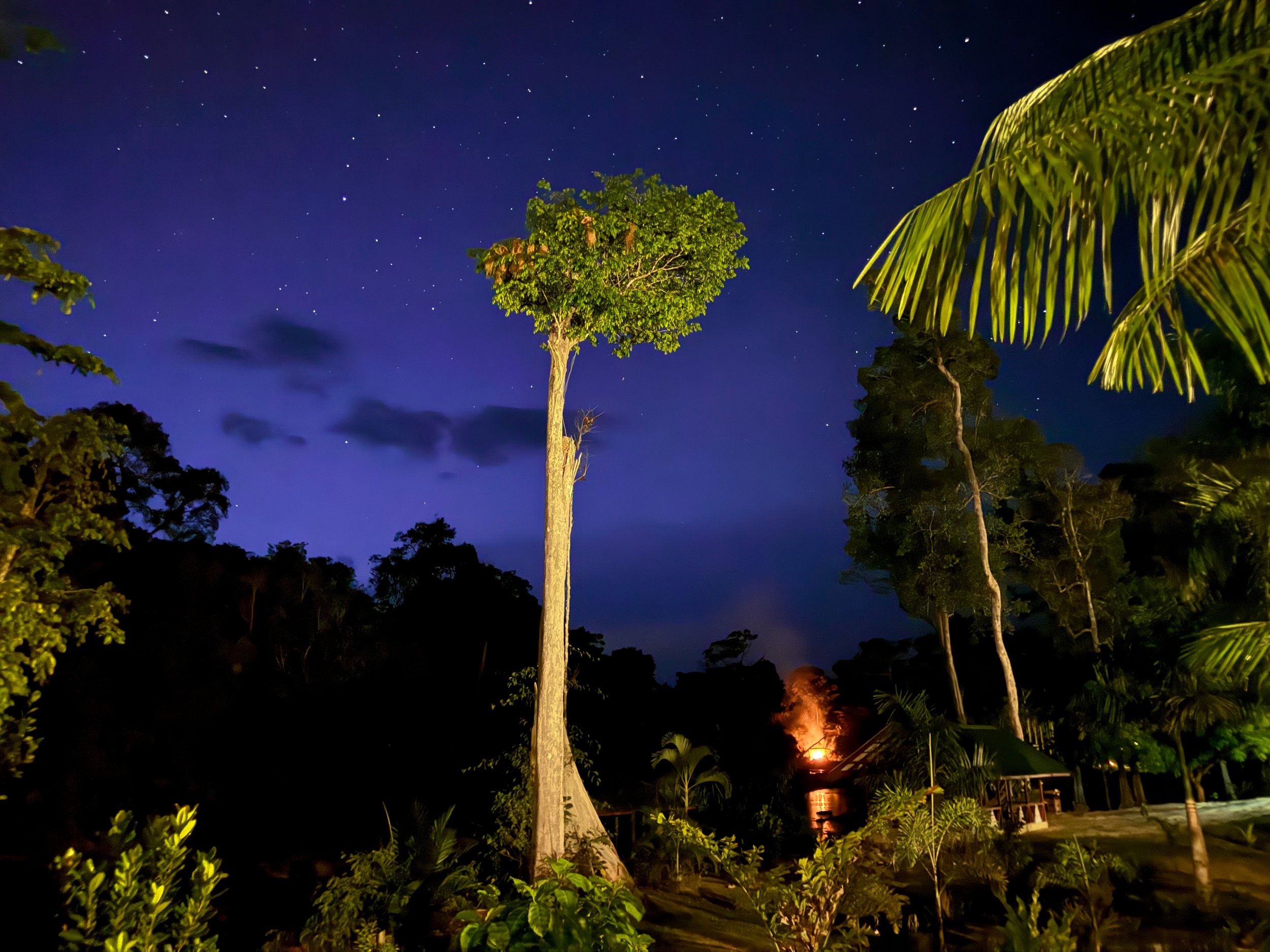
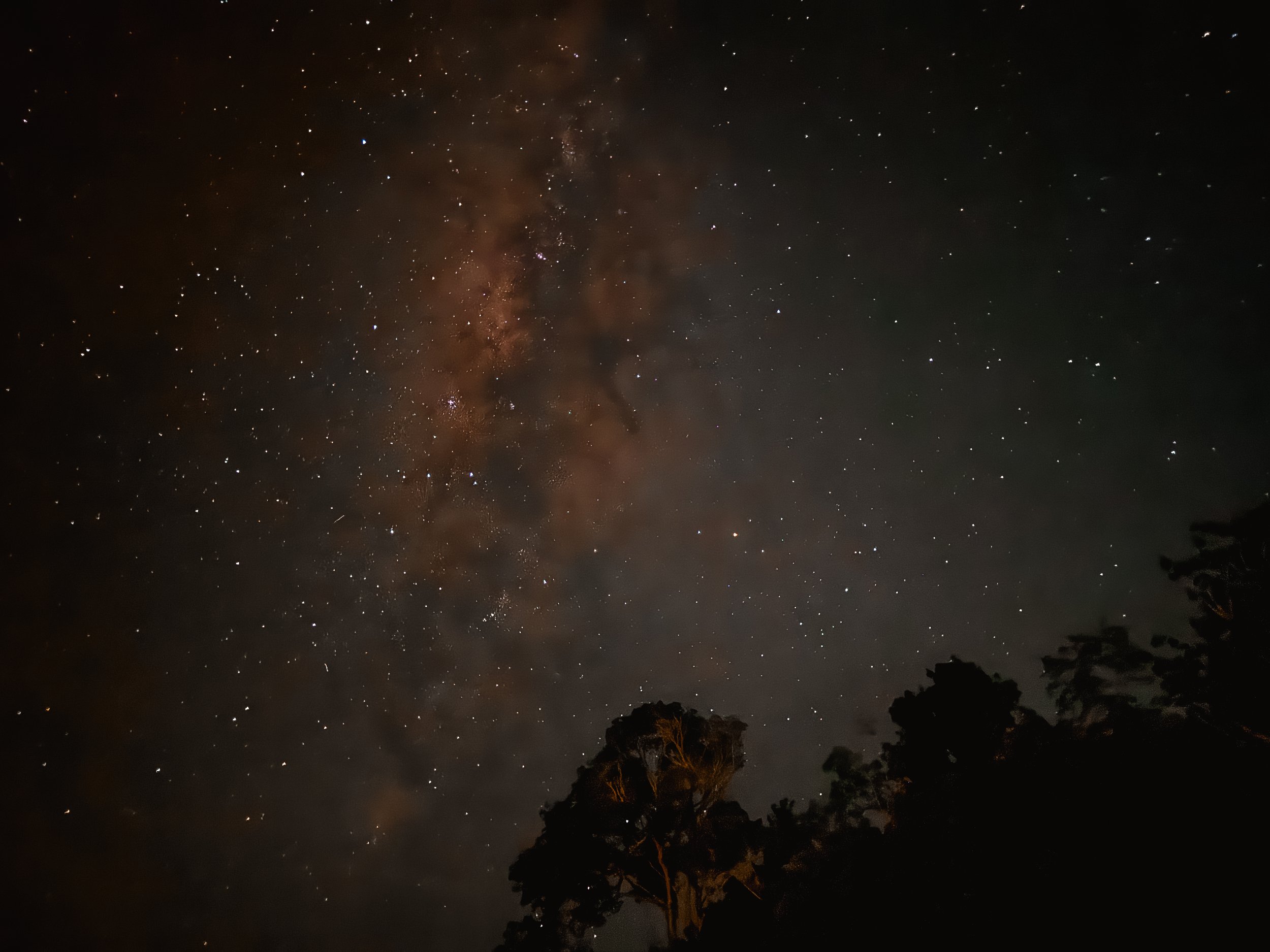
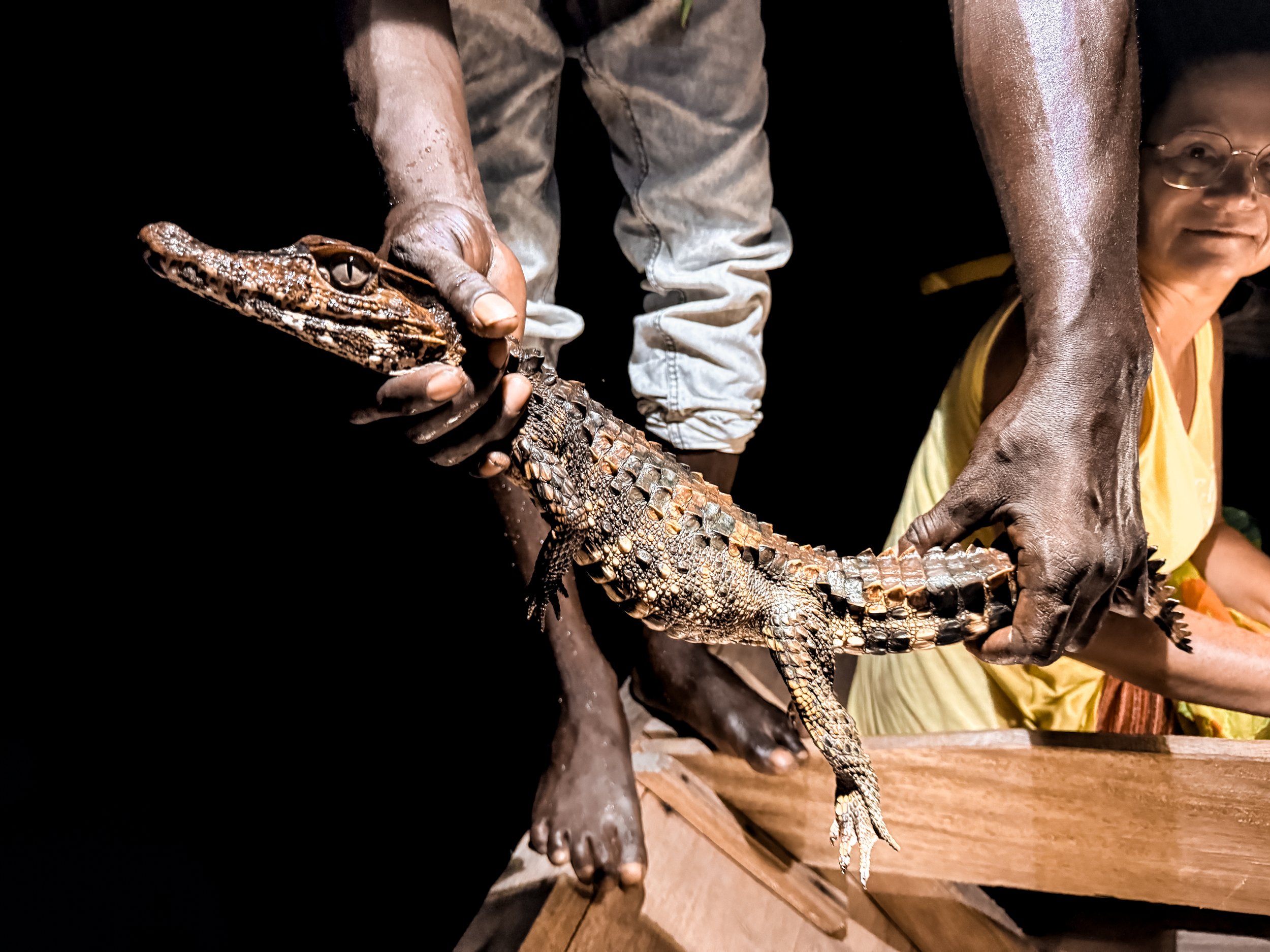
Day Two
Day two was all about exploring the island’s nature and wildlife.
Waking up in the Amazon
The noises of the rainforest, birds chirping, frogs croaking and cicadas humming all around our bungalow provided a fitting wake up call for our second day in the Amazon. At breakfast, our guide found a tarantula in the palm trees and placed it on us. The furry spider slowly crawled on our arms, applying subtle pressure as its tiny feet climbed.
Hiking the Amazon
We began our hike along the perimeter trail of the island, walking through dense primary forest with hundred year old trees and newly grown foliage. Along the way, our guide taught us Amazon survival skills including how to call for help if lost, snake warning signs and to learn from the monkeys to know what’s safe to eat.
Among the sounds of the rainforest, we heard some squeaks in the canopy and spotted a group of curious capuchin monkeys. Knowing we may have had food, the cute monkeys paid us a visit. We fed them pieces of banana which they quickly snatched from our hands while some even jumped onto our shoulder, wrapping their furry tails around our arms.
Nighttime Caiman Tour
As night fell, we took a canoe tour downriver to spot caiman under the stars. We shined a bright light towards the river bank, looking for the reflection of the caiman’s eyes. After several minutes, we caught an amber glow reflecting back. Our guide approached the small caiman and snatched it out of the water for everyone to see up close. After releasing it, we canoed further down river spotting one more, twice as large as the first, before returning back to Anaula.
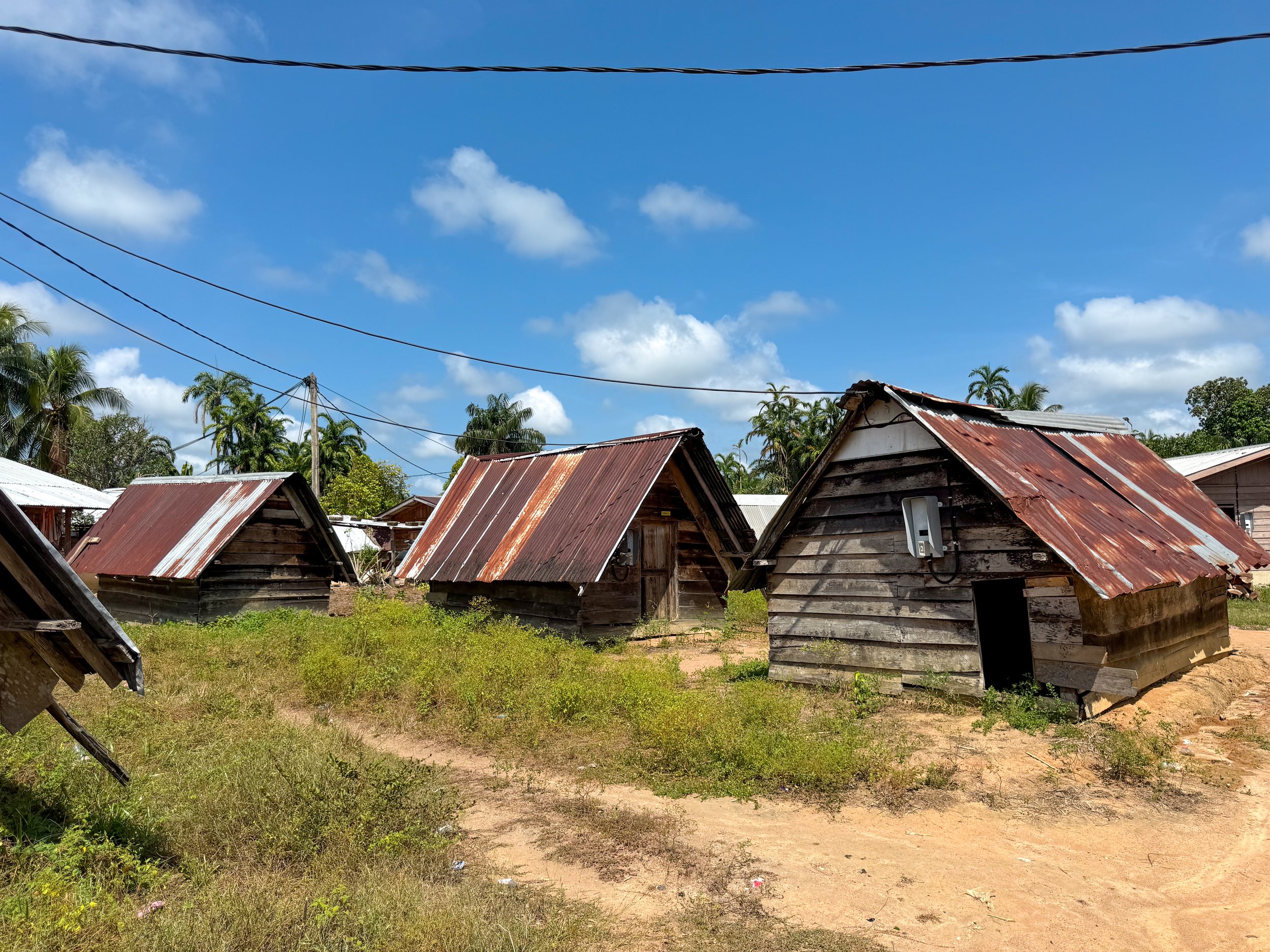
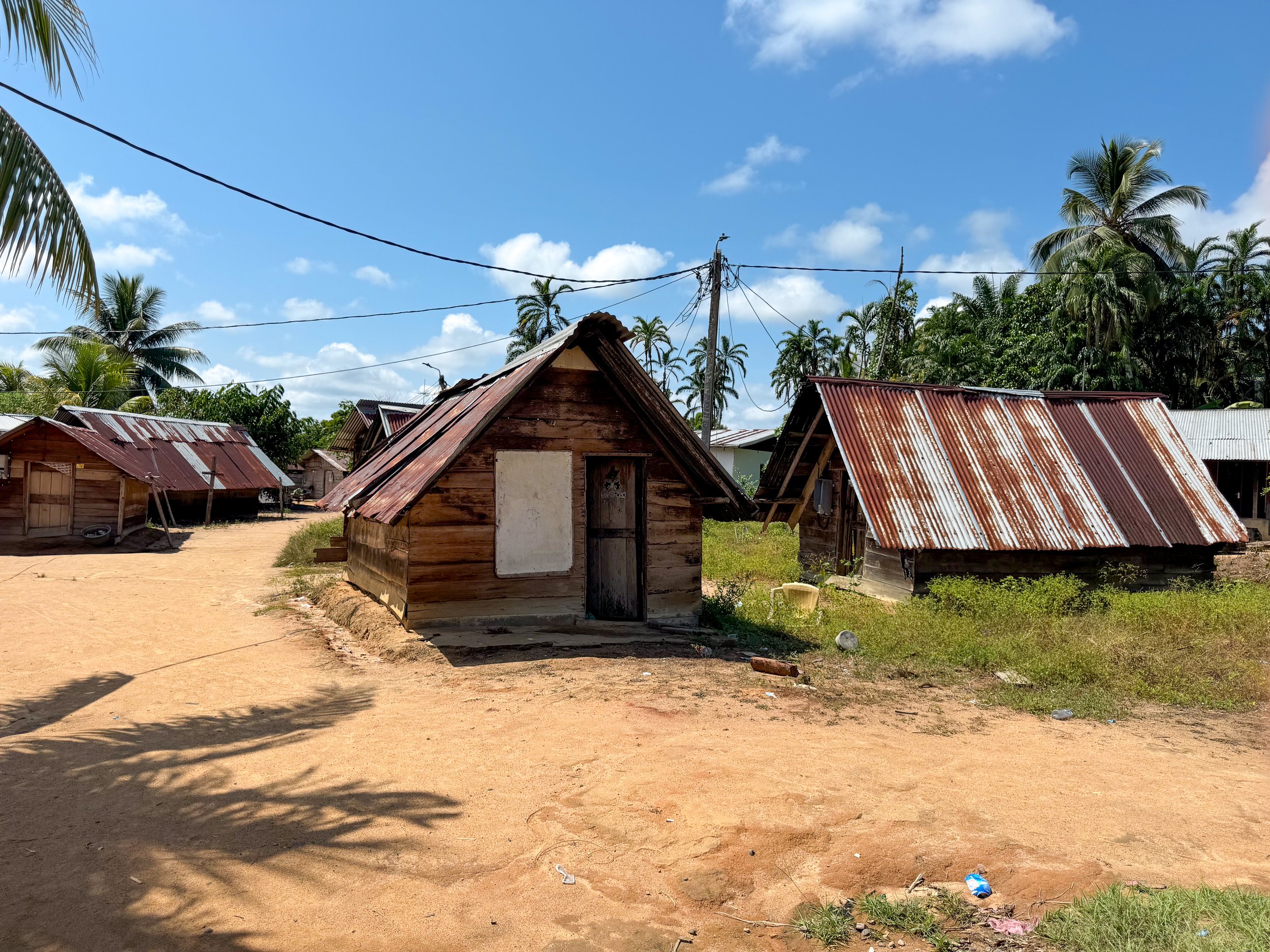
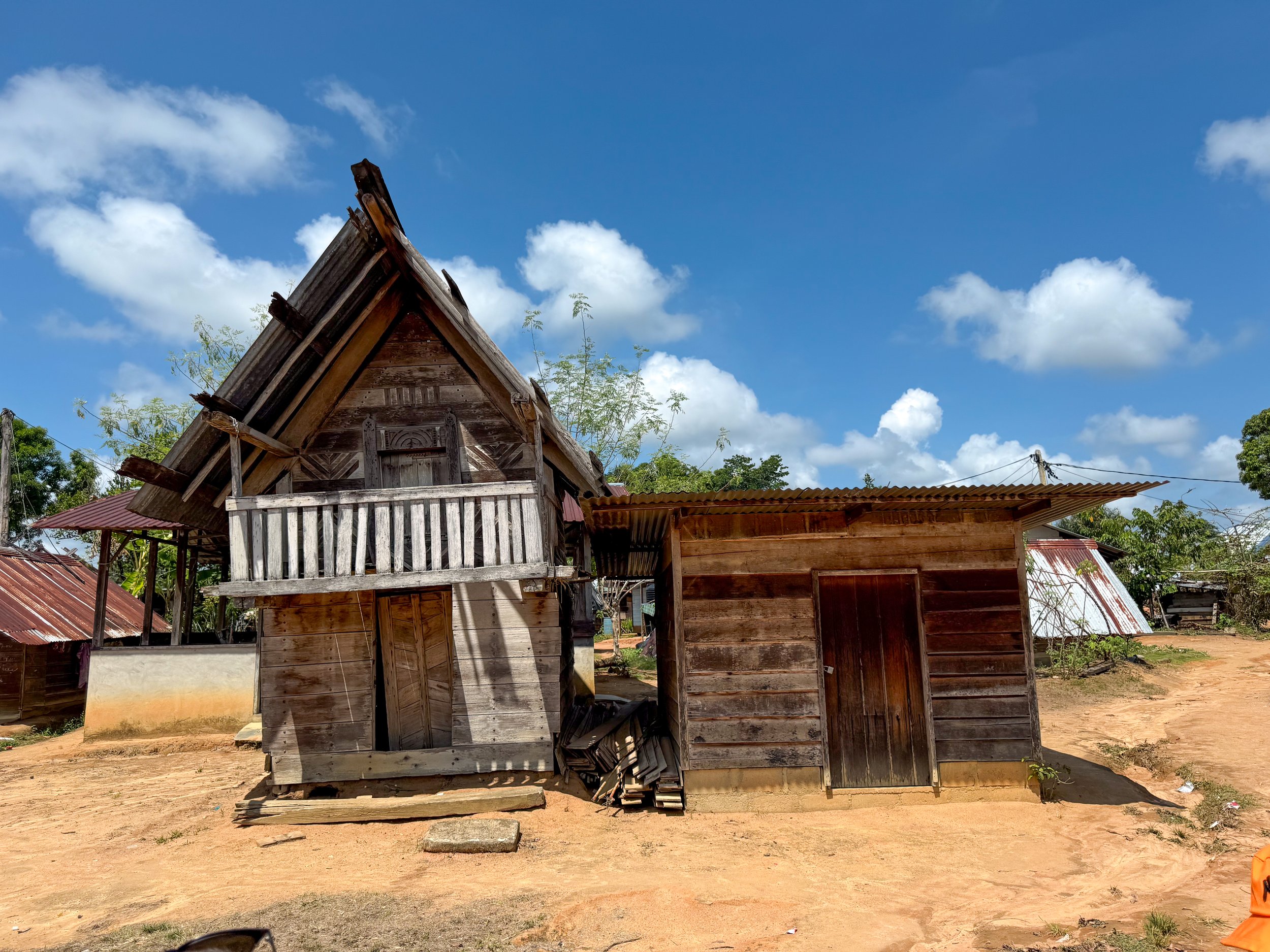
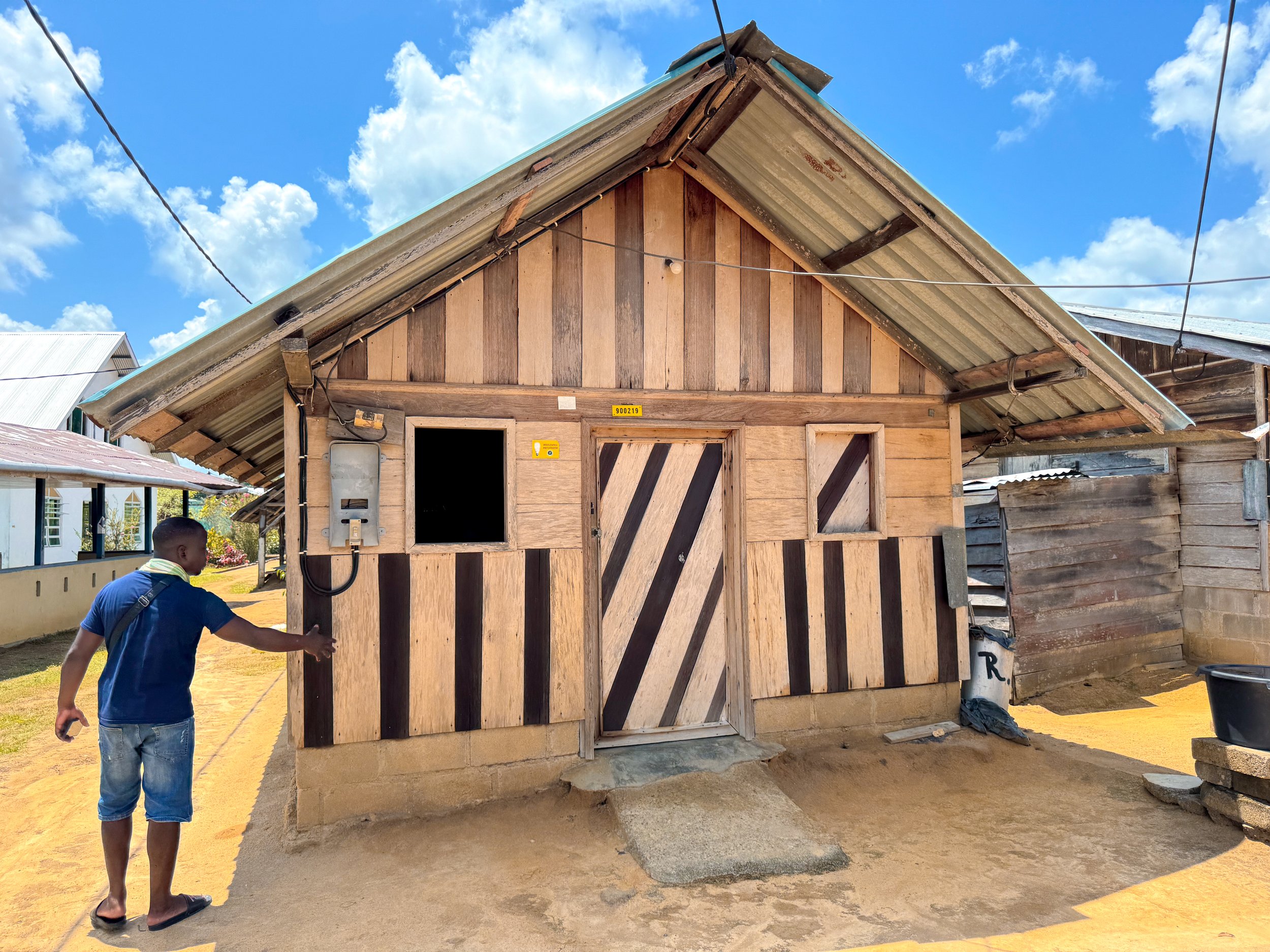
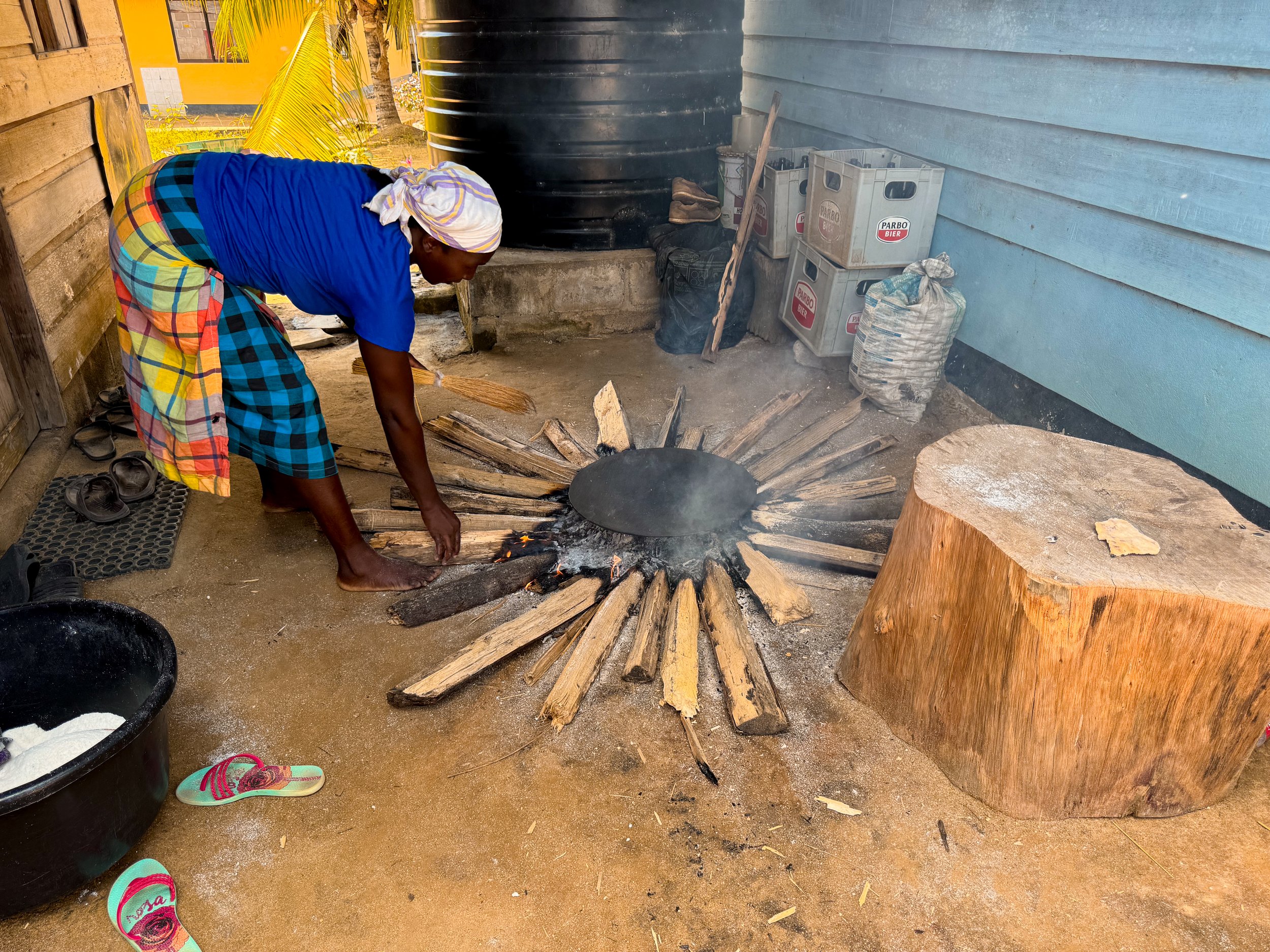
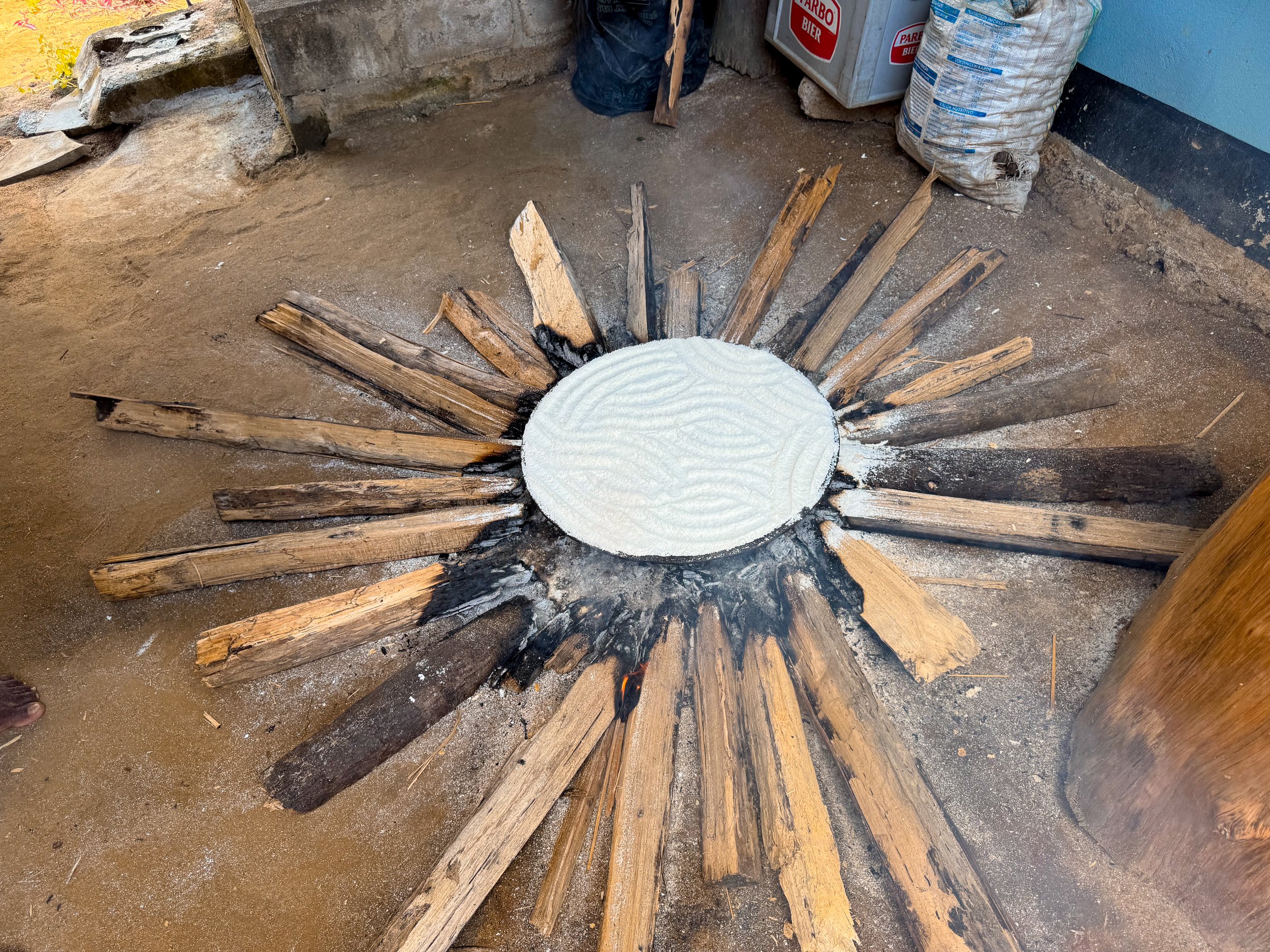
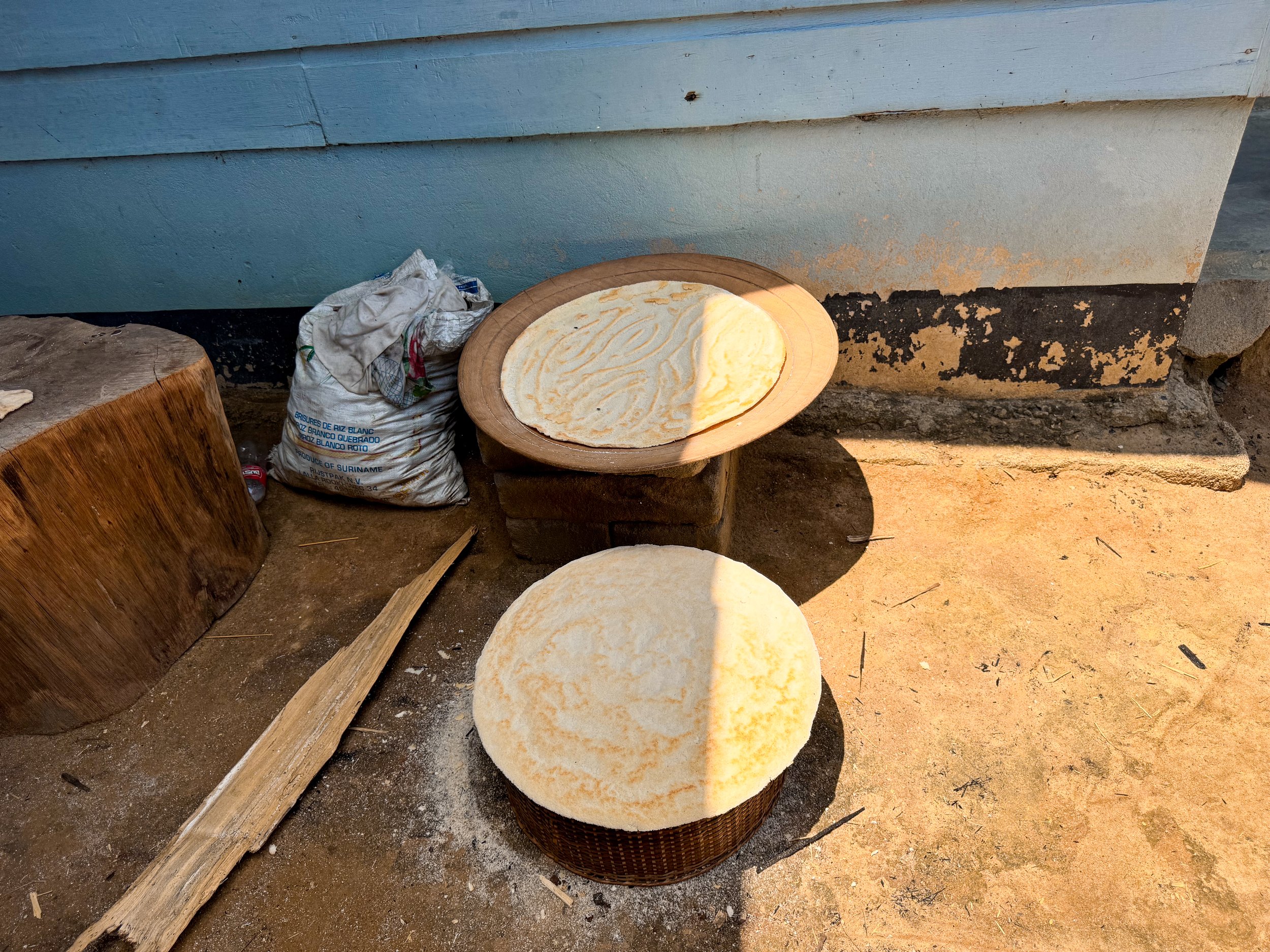
Day 3
Day three was all about the local culture and more relaxation.
The Village Walk
We visited the Village of Ladoani further up the Suriname River. The village is home to the Saamaka, 1 of the 6 Maroon people in the country. The Maroon people are the descendants of enslaved Africans brought to Suriname who have lived upriver for generations. Traveling by canoe, on foot and then by canoe again, we reached the village of nearly 3,000 people.
During our guided village walk, we learned about the village, its people, culture, language and history. The village is comprised of wooden plank houses with tin roofs and dirt pathways, a hospital, school, church and at least two mini marts. Trees producing papaya, coconut, banana, star apple, mango, cashew and breadfruit flourish here while gardens with okra and cassava grow outside of peoples’ homes.
It’s quiet during the day. The men have left to harvest crops, hunt within the jungle and fish further up river. The elders, women, children and young men remain with jobs of their own. Women harvest leaves for bathing, grind cassava to bake bread, wash laundry in the river and roast palm seeds to produce oil. Children play together, learn at school, empty rainwater from canoes and show off their pet parrots while younger men mix concrete to build foundations for new homes.
Relaxation Mode
After retuning for lunch, we spent the remainder of the afternoon napping in hammocks by the river, watching canoes navigate upstream, listening to the flow of the rapids, hum of cicadas and chirping birds. Towards the late afternoon, we migrated to the pool for a snack and a local beer.
Saamaka Performance
After dinner on our final night, we were treated to a cultural dance performance by drummers and dancers from the Ladoani Village. They performed several songs and dances that originated during the plantation era when enslaved Africans would use the performances to distract their oppressors while others escaped. Since then, the Saamaka have continued these performances but for reasons of joy and happiness.
Day 4
Day four involved a relaxing morning in nature before returning to Paramaribo.
The Last Morning At Anaula
We woke up early to listen to the birds as the sun rose followed by a nature walk where we spotted the same family as monkeys from day two. They were feasting on the fruit and nuts of a palm tree near the river. In the early afternoon, we began our scenic and exciting boat ride back to Atjoni where we boarded the bus returning to Paramaribo.
The Cuisine at Anaula
Over the four days at Anaula, we got to taste many Surinamese dishes cooked by the Maroon people as well as dishes brought to Suriname by its culturally diverse population of Indians, Indonesians and Dutch. The kitchen prepared 3 buffet meals a day, a mid afternoon snack and accommodated our pescatarian preference.
Fresh Fruit: Pomelo, watermelon, papaya & banana
Poffertjes: Tiny Dutch pancakes
Roti: Flat bread served with masala eggs, curried potatoes, pureed squash, sautéed eggplant and rice.
Pakabana: Sliced, battered and fried plantains.
Witi Fis: Fried white fish.
Salt Fish: Salted and shredded cod.
Menu Vada. A savory dough flavored with spices and shaped into a donuts.
Nasi. A mixed rice dish, influenced by Indonesian and Chinese cuisine. It can be served with vegetables or meats.
Surinamese Vegetables and Greens:
Sautéed antroewa (white eggplant) and soproro (bitter melon)
Steamed yardlong beans
Boiled white sweet potatoes & cassava
Blanched Kaisoi (a type of spinach)
Okra Soup, cooked with okra and greens
Where to Stay
In Paramaribo, we stayed in a private room at the Twenty4 Hostel. The hostel has communal areas like a reception, kitchen and back patio. They offer simple breakfasts, luggage storage, taxi services and can arrange tours across the country.
Good to Know
Language: Dutch, English, Sranan Tongo and several Maroon languages are commonly spoken.
Currency: Uses the Suriname Dollar. Cash is preferred over credit card.
Credit Cards: Visa is not accepted anywhere. Mastercard is accepted. There is typically a 5% credit card fee.
Tipping: 10% is customary
Drinking Water: Tap water is not safe for consumption unless rapidly boiled for at least one minute. Avoid ice as it’s often frozen tap water.
Climate: Paramaribo is hot and dry during September to October. Make sure to drink plenty of water.
Insects: When in the interior of the country, wear long socks and insect repellant to avoid bites, especially at night time or after the rain.
Driving: People drive on the left side of the road. Cars have their steering wheels on the right side of the car. Speed limits and milage are in km.
LGBTQ+: Though there are some restrictions one LGBTQ+ rights, October is the unofficial Pride month. We saw rainbow and progress flags at embassies, large hotels and WHO buildings.
Visas: We needed to apply for an E-Visa a minimum of 72 hours before visiting Suriname and pay a $59 fee.
Getting Around
Airport Taxi: The airport is located a little over an hour from Paramaribo. Taxis typically cost $50 one way.
On Foot: The city center near most sights is easily walkable.
For Next Time…
One thing we learned in Suriname is that 9 days is hardly enough time. Next time we return, we hope to see more of the interior, coast and even the neighboring countries of Guyana and French Guiana.
Raleighvallen. A scenic and long cascading waterfall deep in the interior.
Voltzberg Dome. A 240 meter granite dome in the middle of the interior. From what we read, it takes two days to reach but has incredible views overlooking the jungle.
Panama City
Panama is a Central American country at the crossroads of North and South America. It’s home to Caribbean beaches, Pacific marine reserves, lush rain forests, an urban metropolis, the Panama Canal and a diversity of cultural backgrounds.
Panama
Panama is a Central American country at the crossroads of North and South America. It’s home to Caribbean beaches, Pacific marine reserves, lush rain forests, an urban metropolis, the Panama Canal and a diversity of cultural backgrounds.
Panama City
Panama City is a sprawling city on the Pacific side of the country with towering skyscrapers, colonial architecture and historic ruins. It’s a starting point to reach many of the country’s nature reserves, and hub for other destinations across Central and South America.
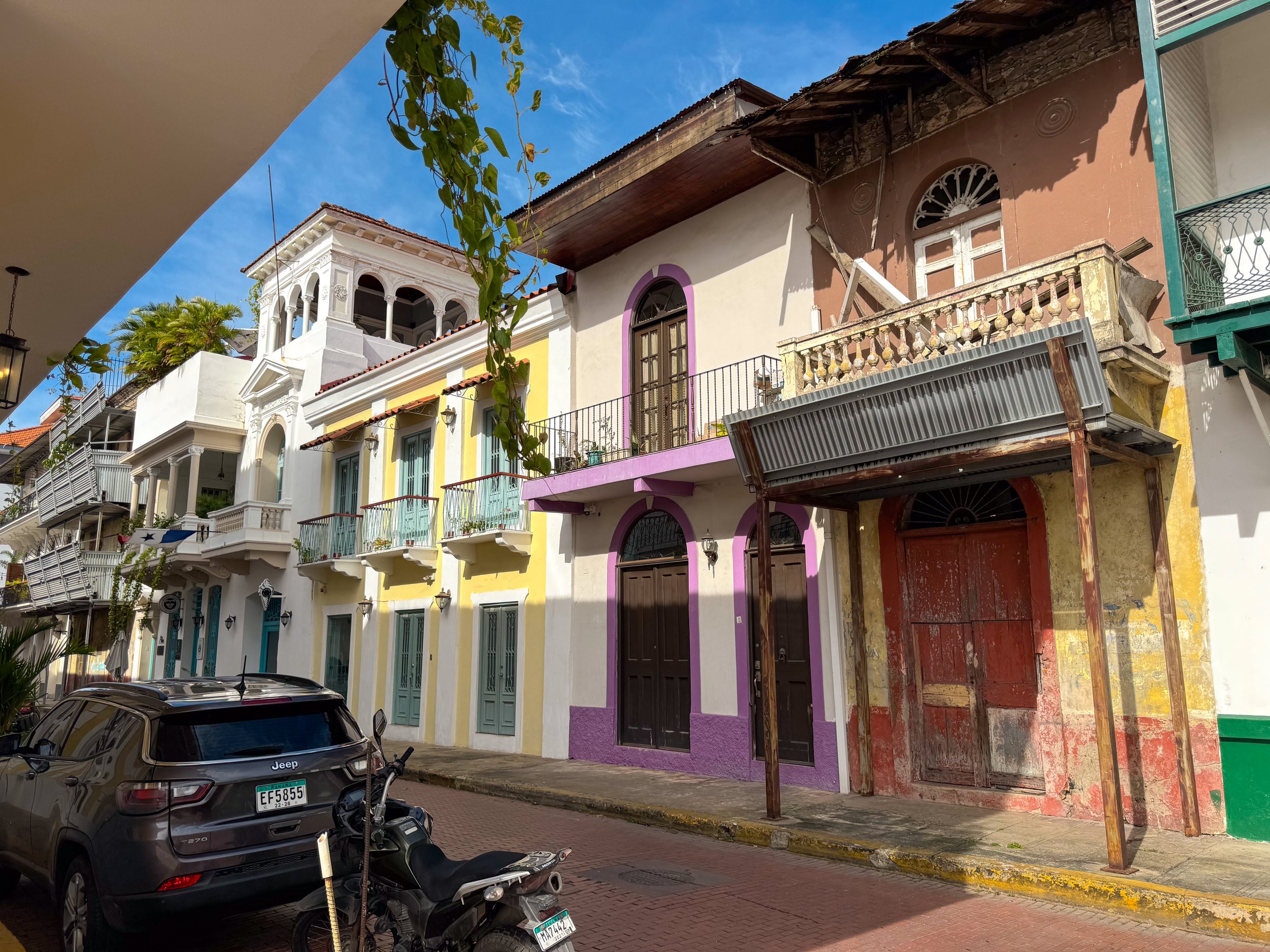
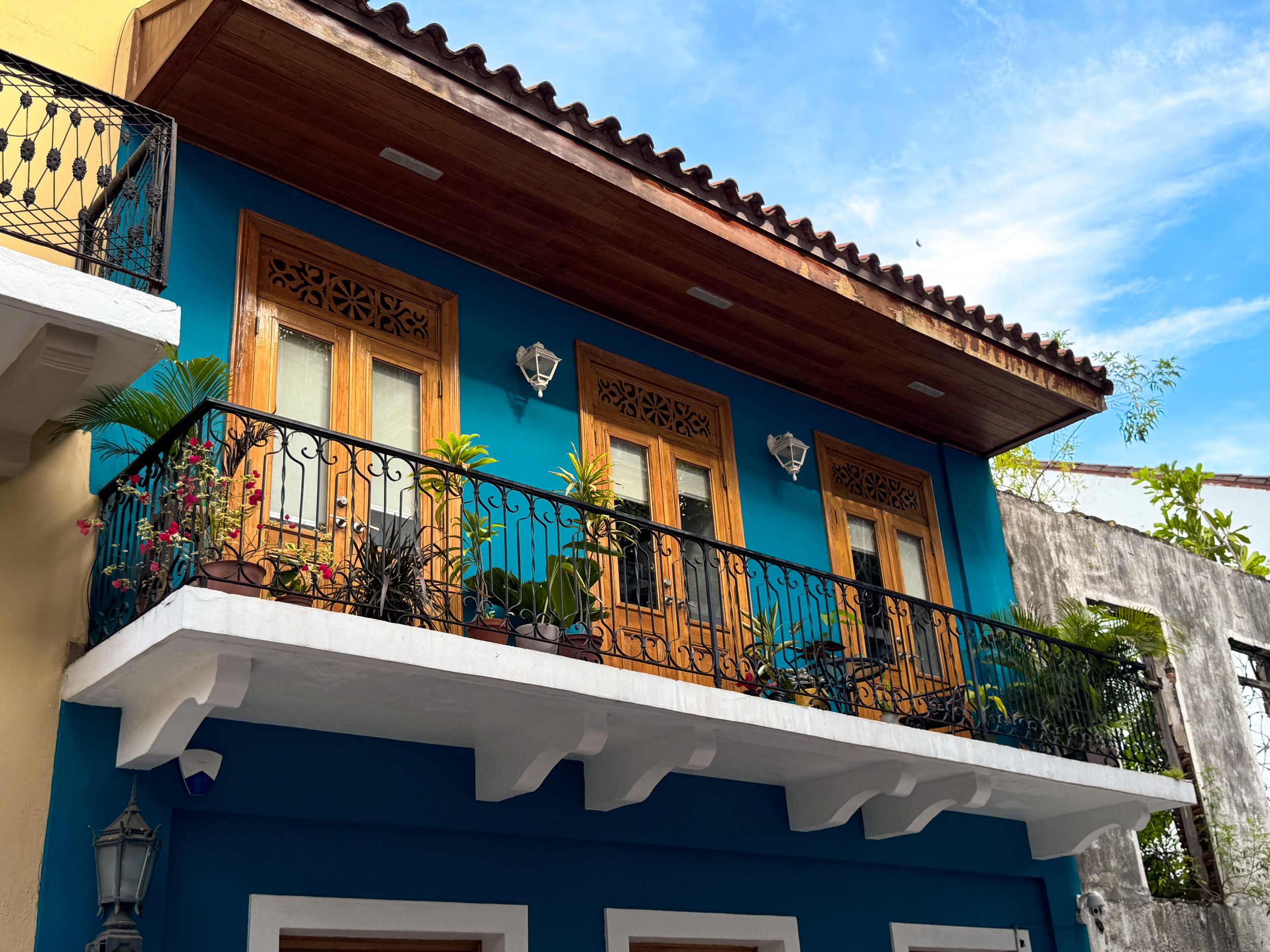
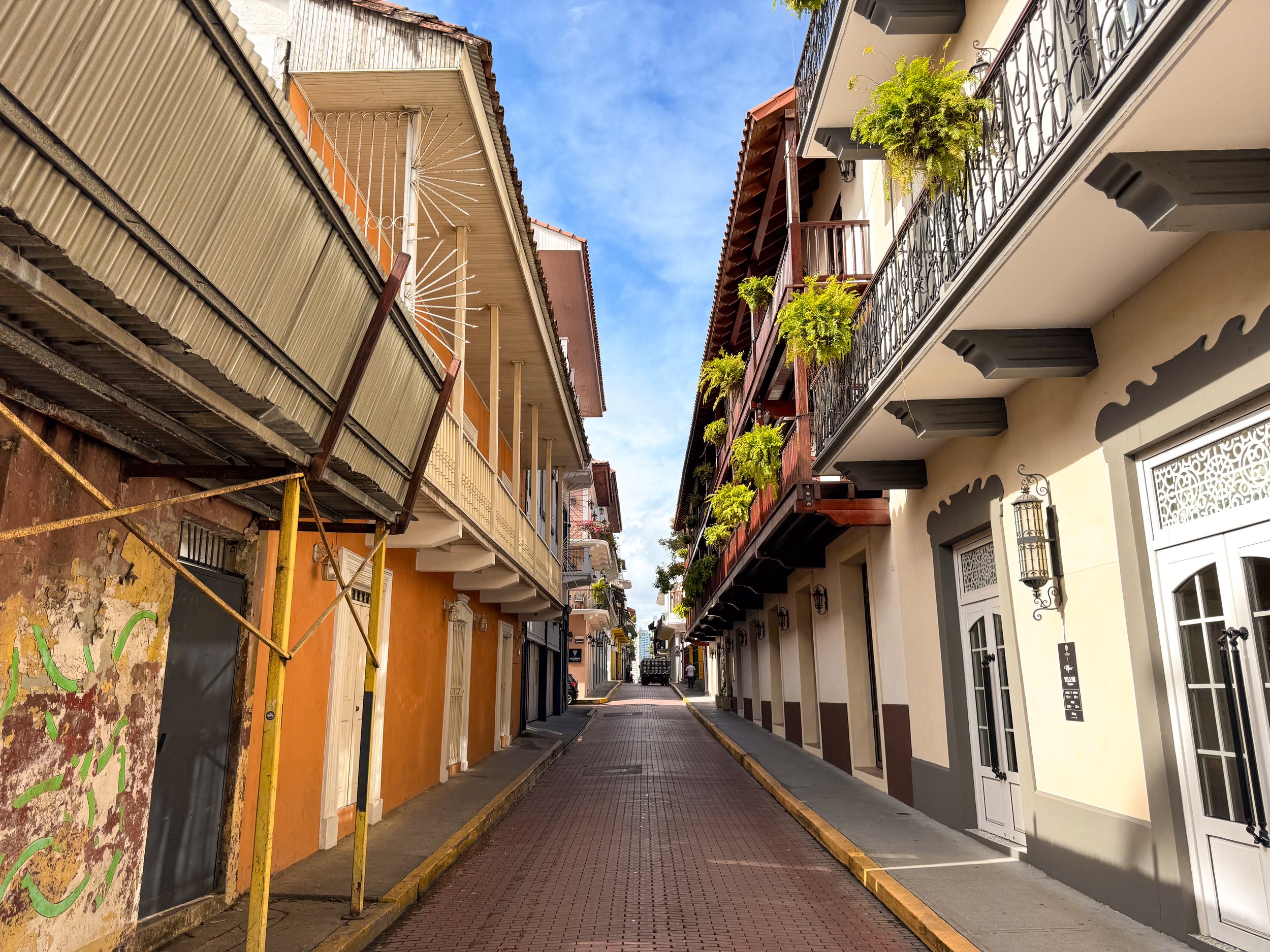
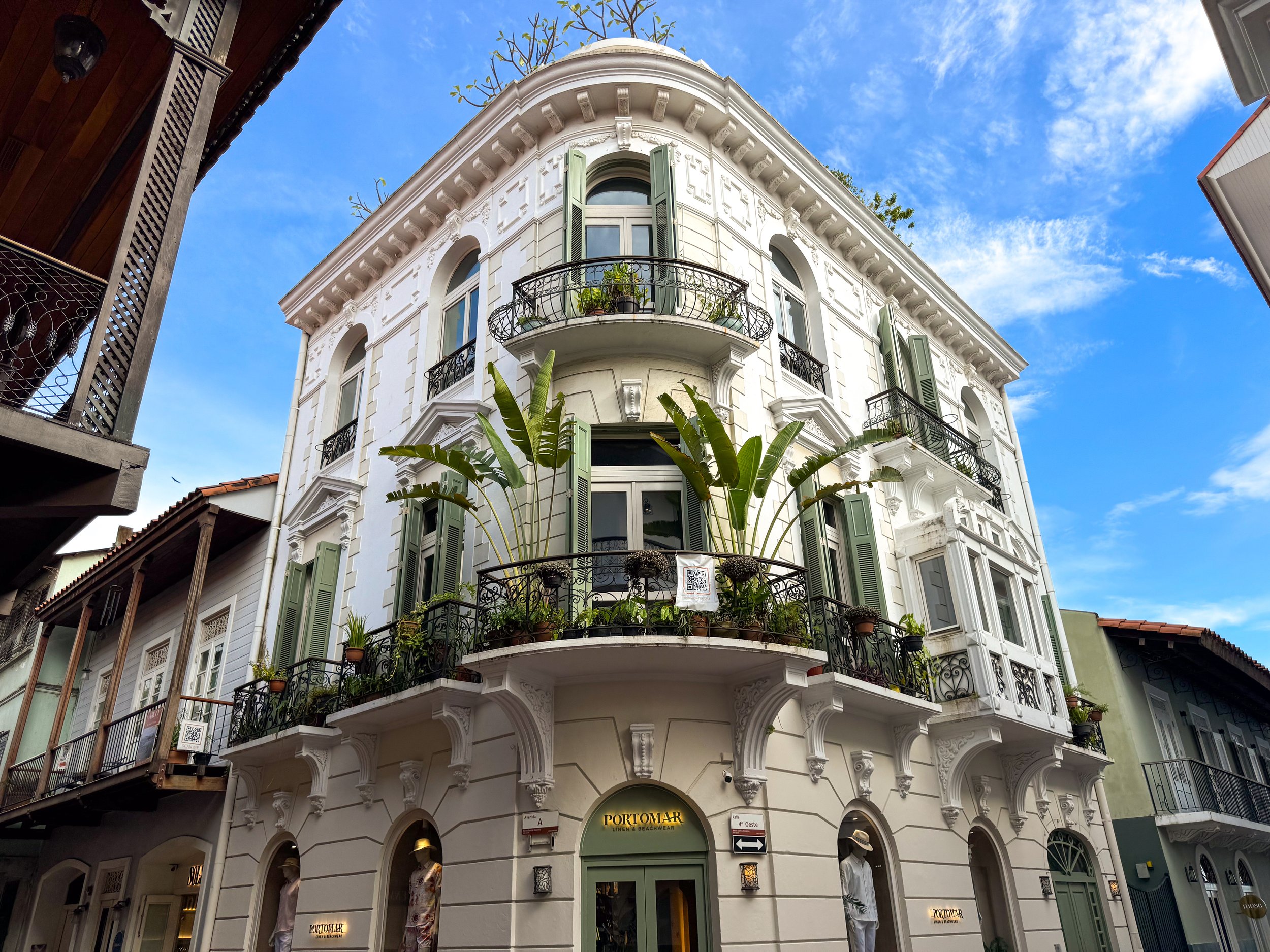
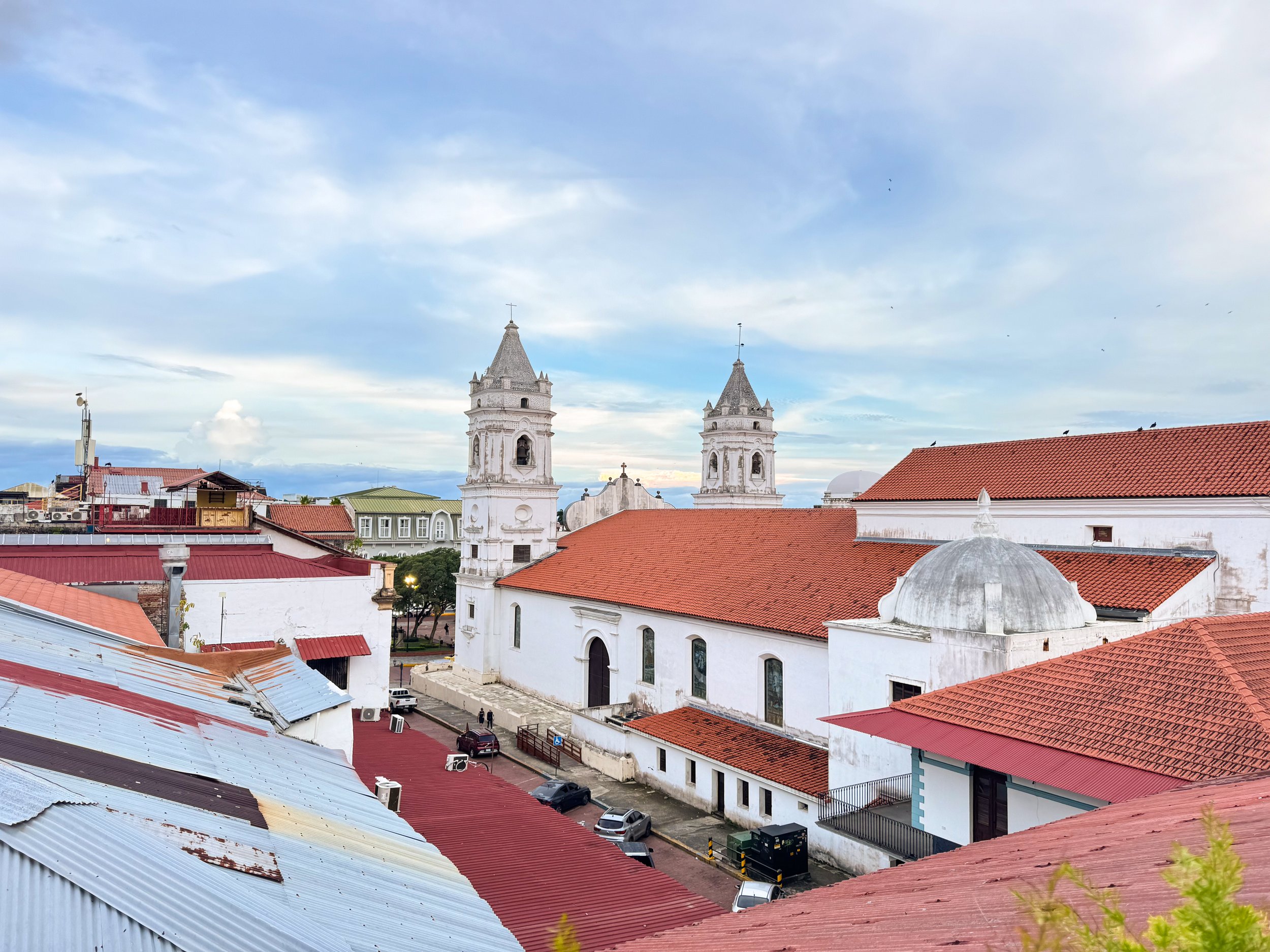
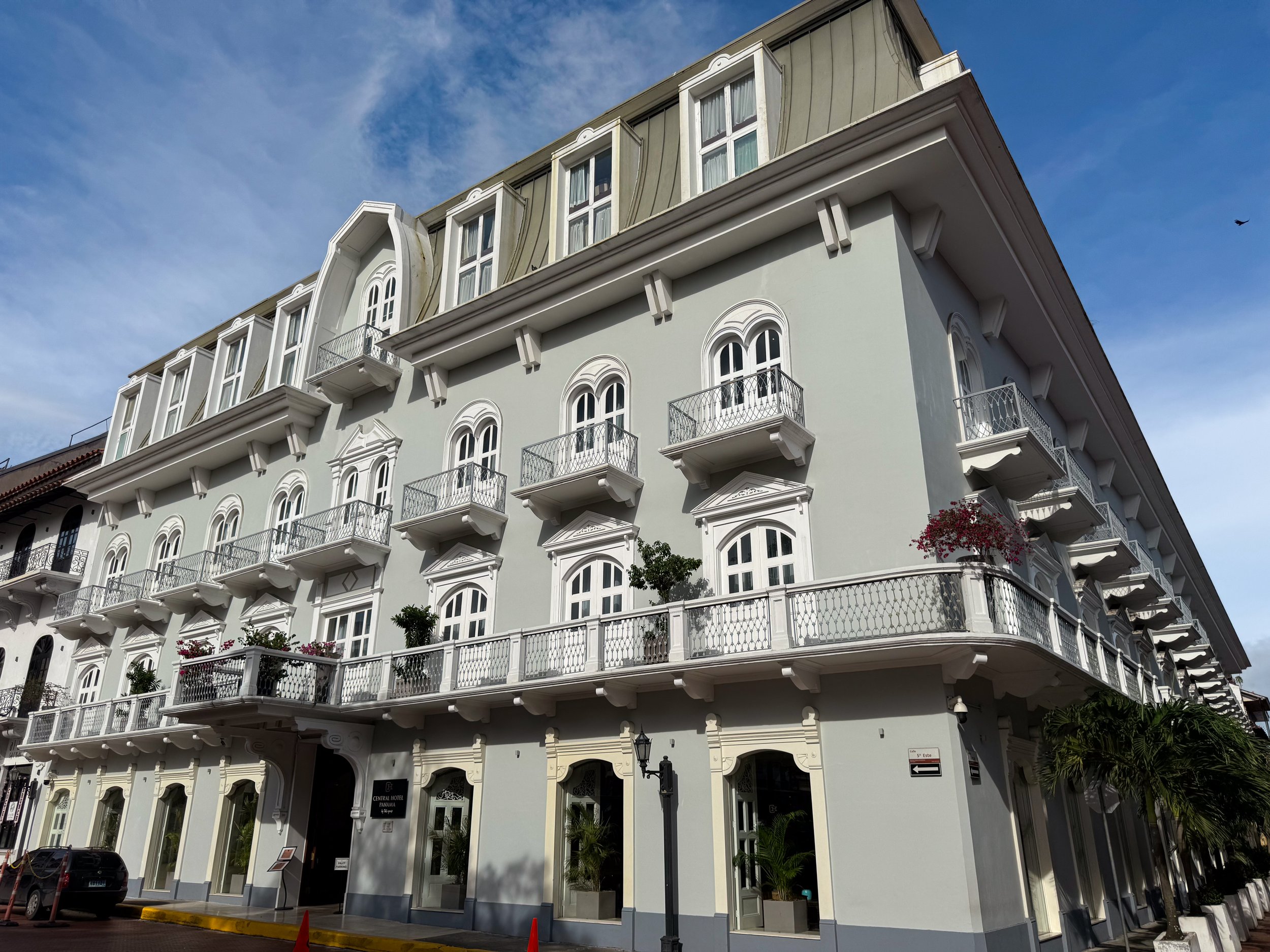
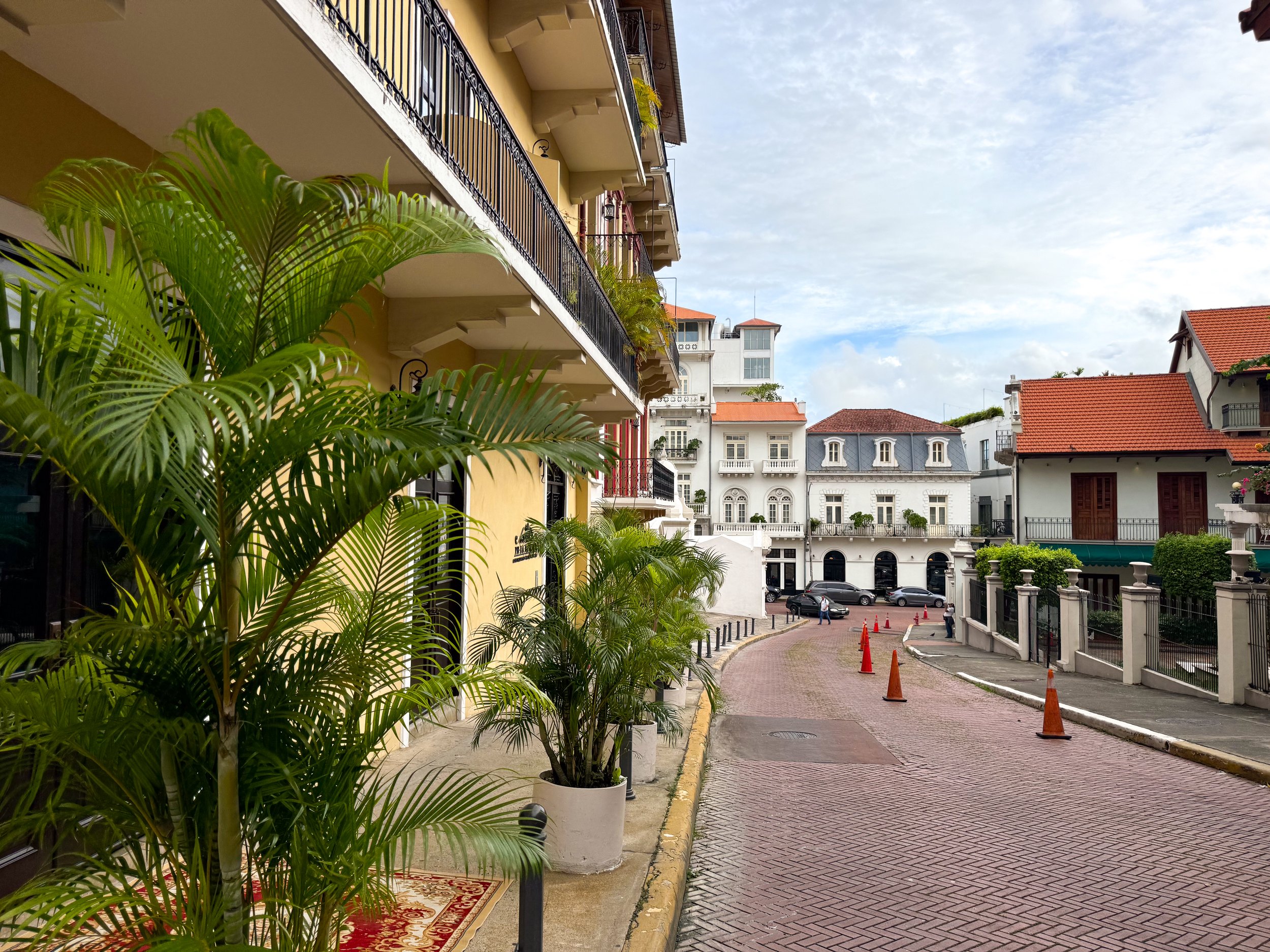
Casco Viejo
Panama City’s old town is a beautiful colonial era neighborhood built on a peninsula overlooking the Panama Bay with walled sections, seafood restaurants, rooftop bars, clothing shops, lush plazas, free museums, beautiful cathedrals and cultural sights.
Elegant Architecture
Walking down the narrow brick streets with the rails of the old street cars still visible feels like stepping through a time capsule. The elegant architecture is akin to the historic neighborhoods of Madrid with ornate facades painted in muted neutrals and pops of color, thin balconies decorated with tropical plants, warmly lit antique lanterns and clay tiled roofs. Some buildings have been well preserved while others juxtapose them as ruins now overtaken by nature.
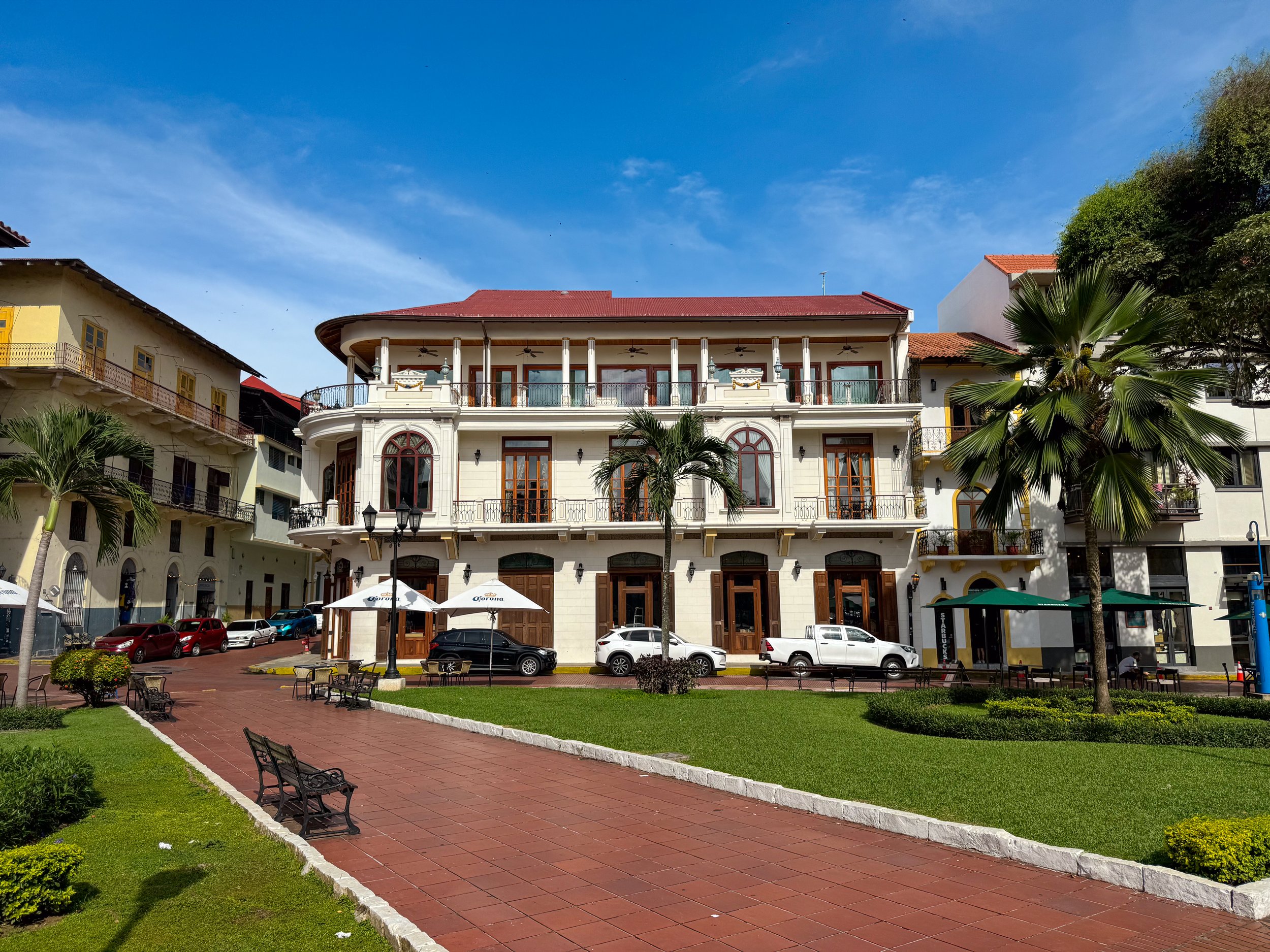
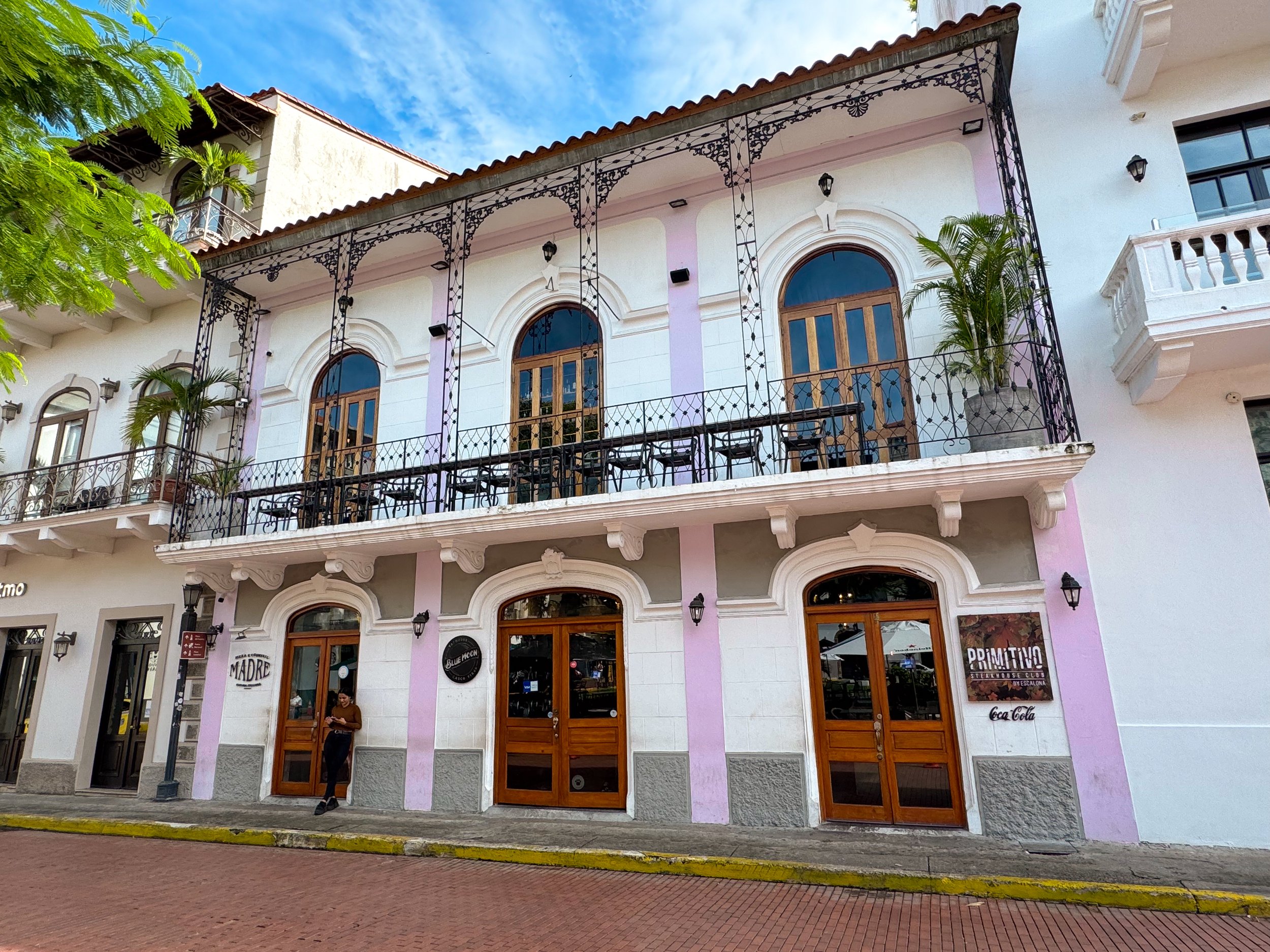
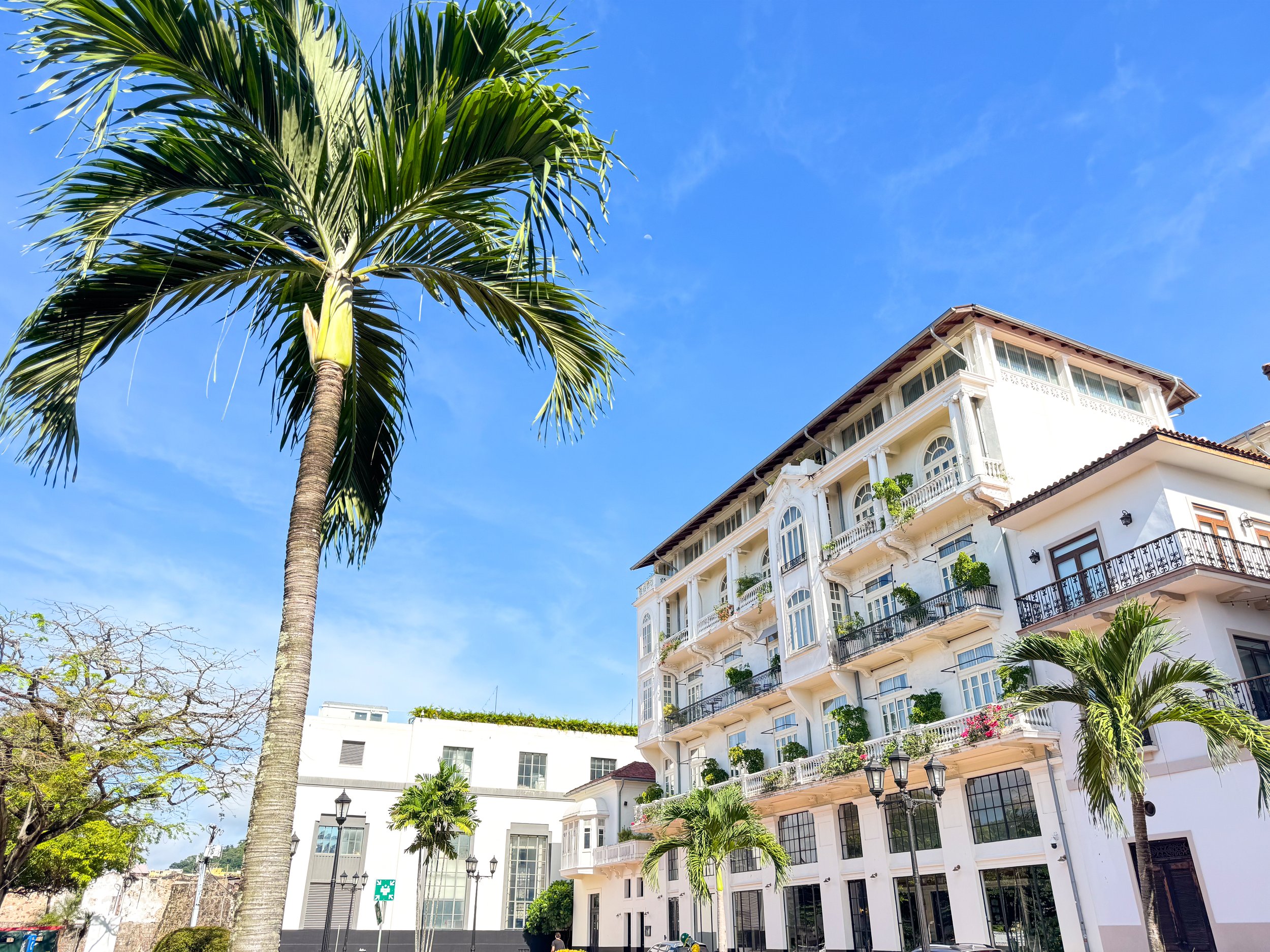
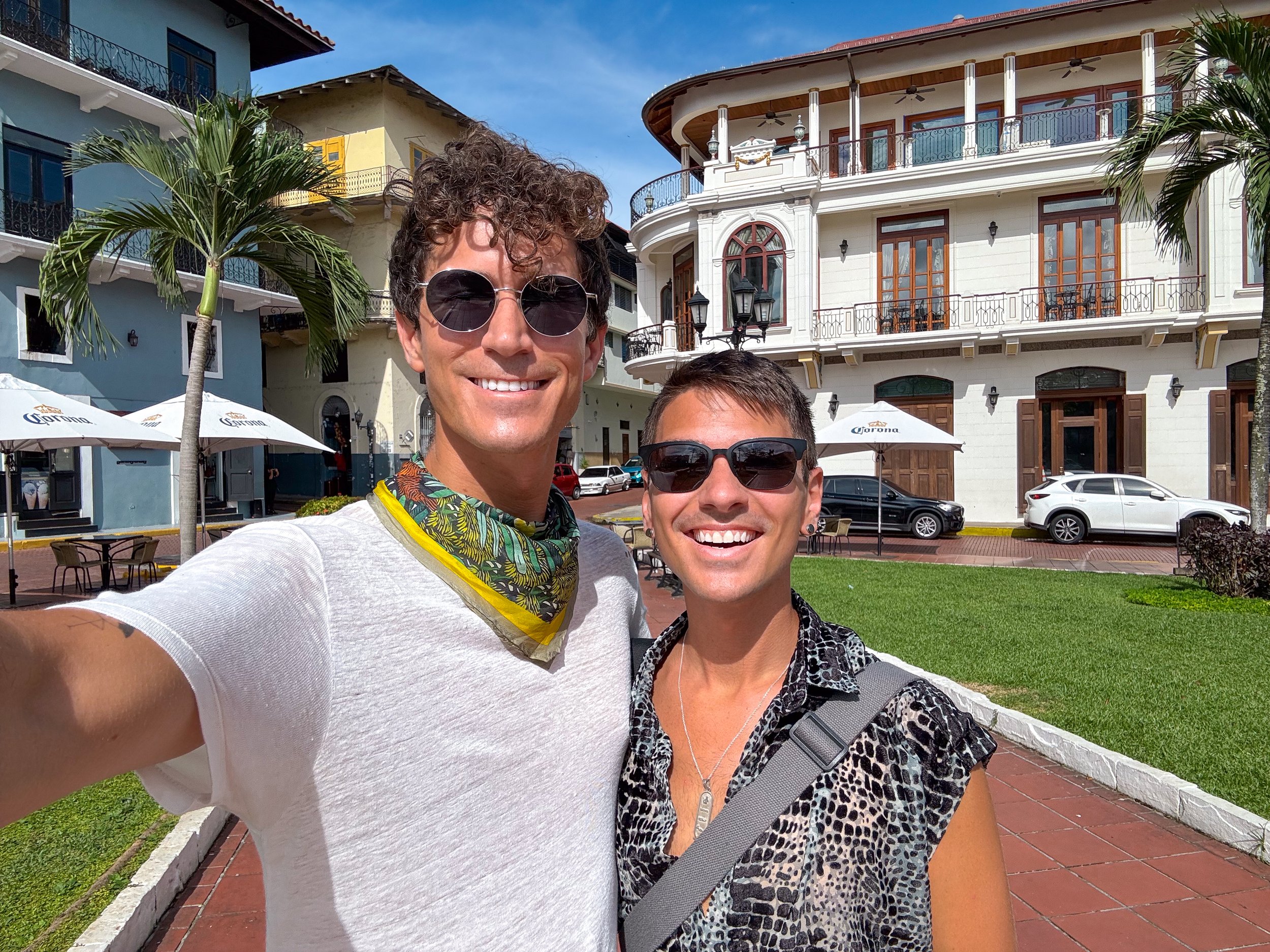
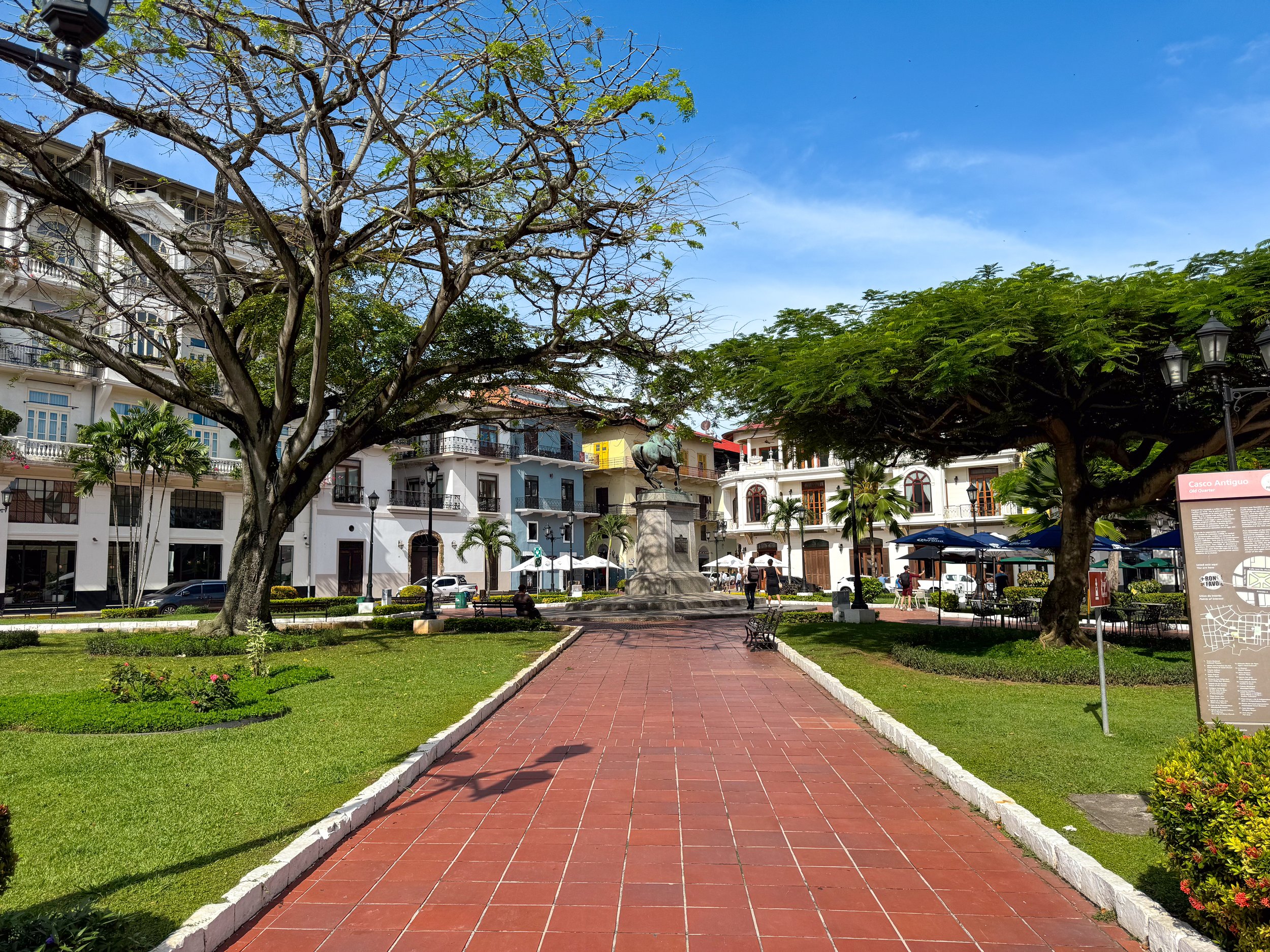

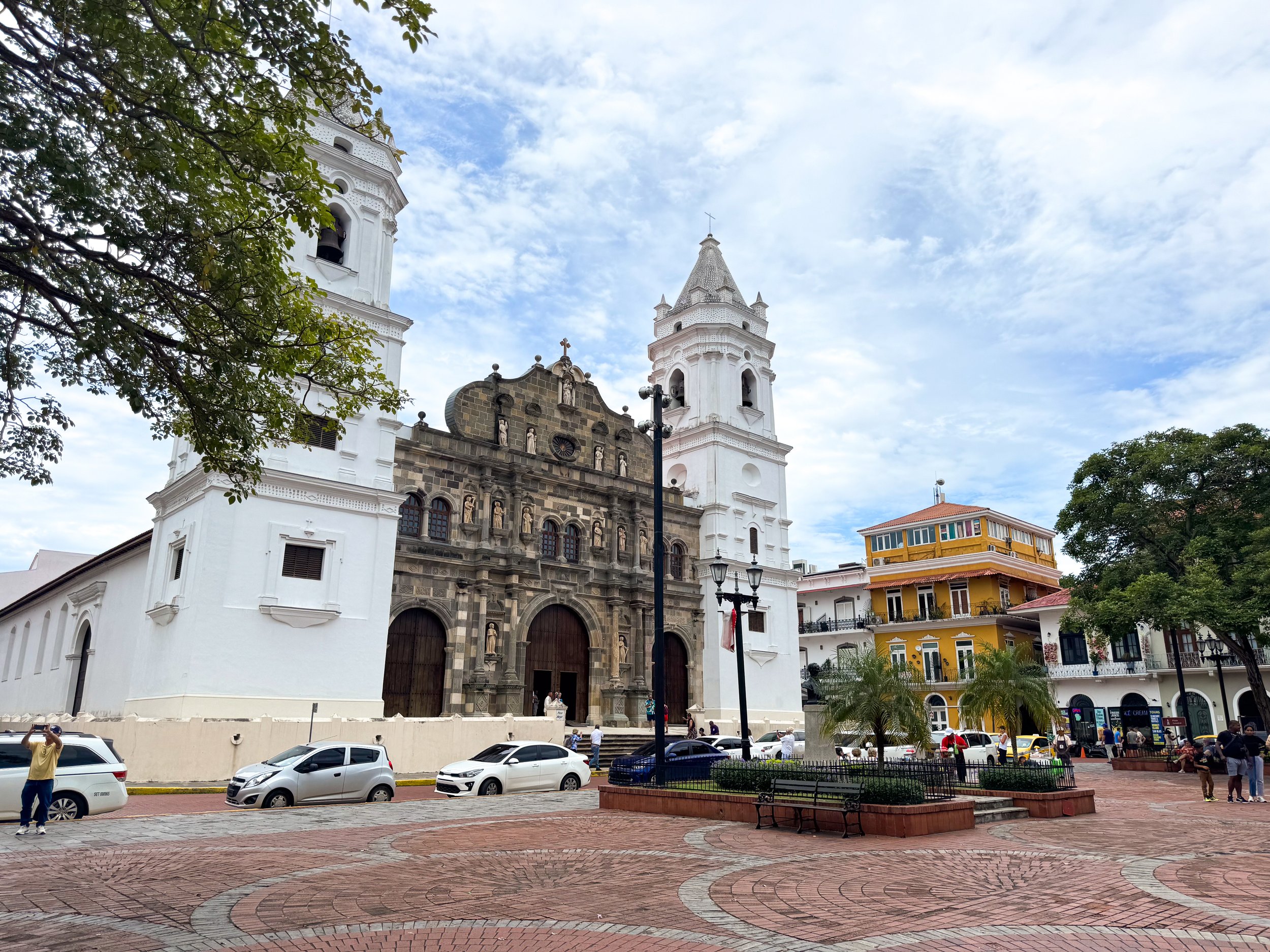
Sights
Plaza Herrera. A romantic and scenic plaza surrounded by elegant architecture, luxury hotels, boutiques and restaurants.
Plaza de la Catedral. A brick paved plaza in the center of Casco Viejo with a gazebo, trees and park benches. It’s flanked by the La Catedral de Panama, colonial architecture and museums. Artists often come here in the early morning with sketchbooks to draw the sights around the plaza.
La Catedral de Panama. The city’s main cathedral built with an ornate stone facade, large wooden door and two white bell towers.
Cintra Costera. A road and walkway several miles along the coast from the modern financial center to the old town of Casco Viejo with city views.
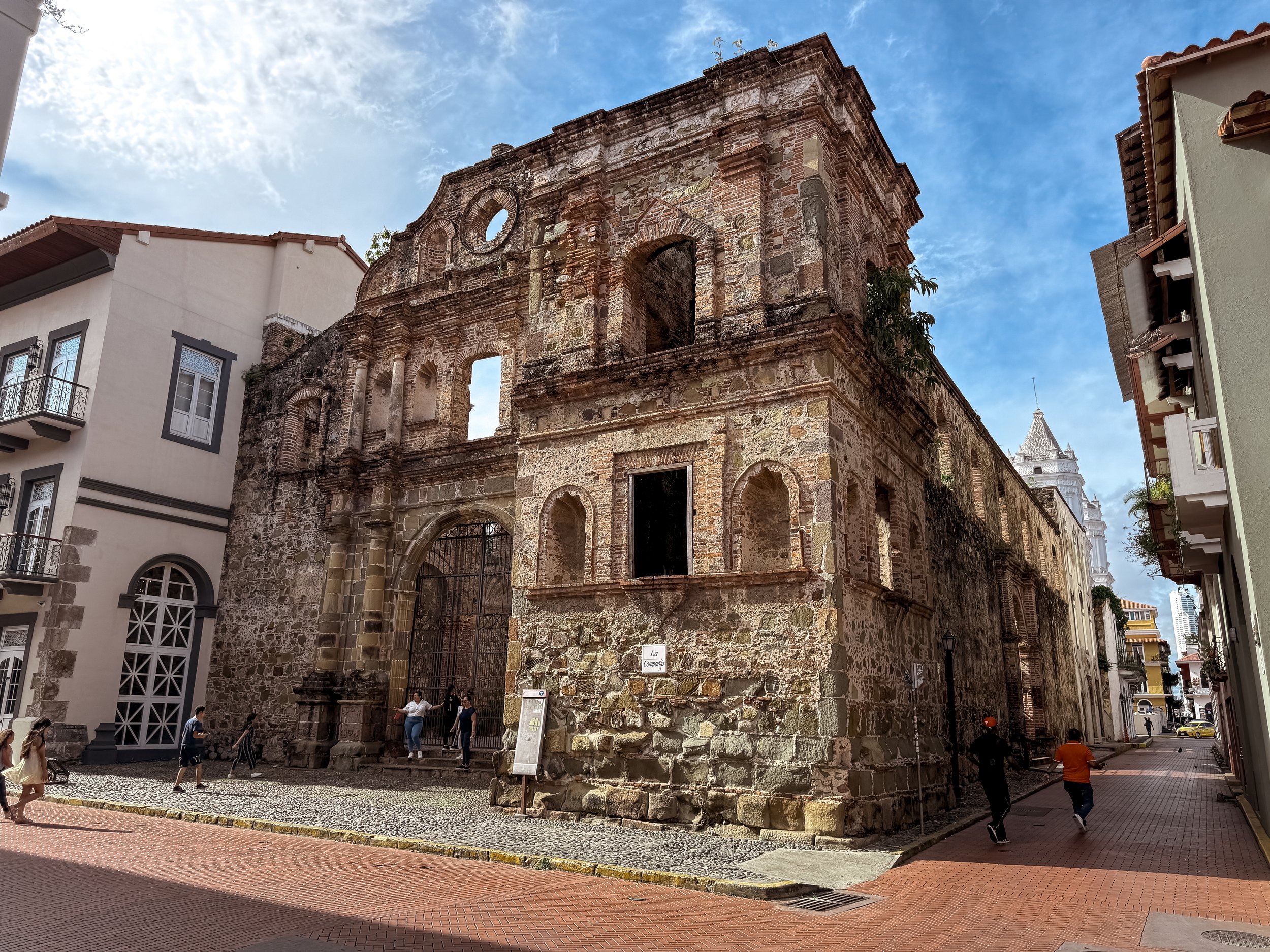
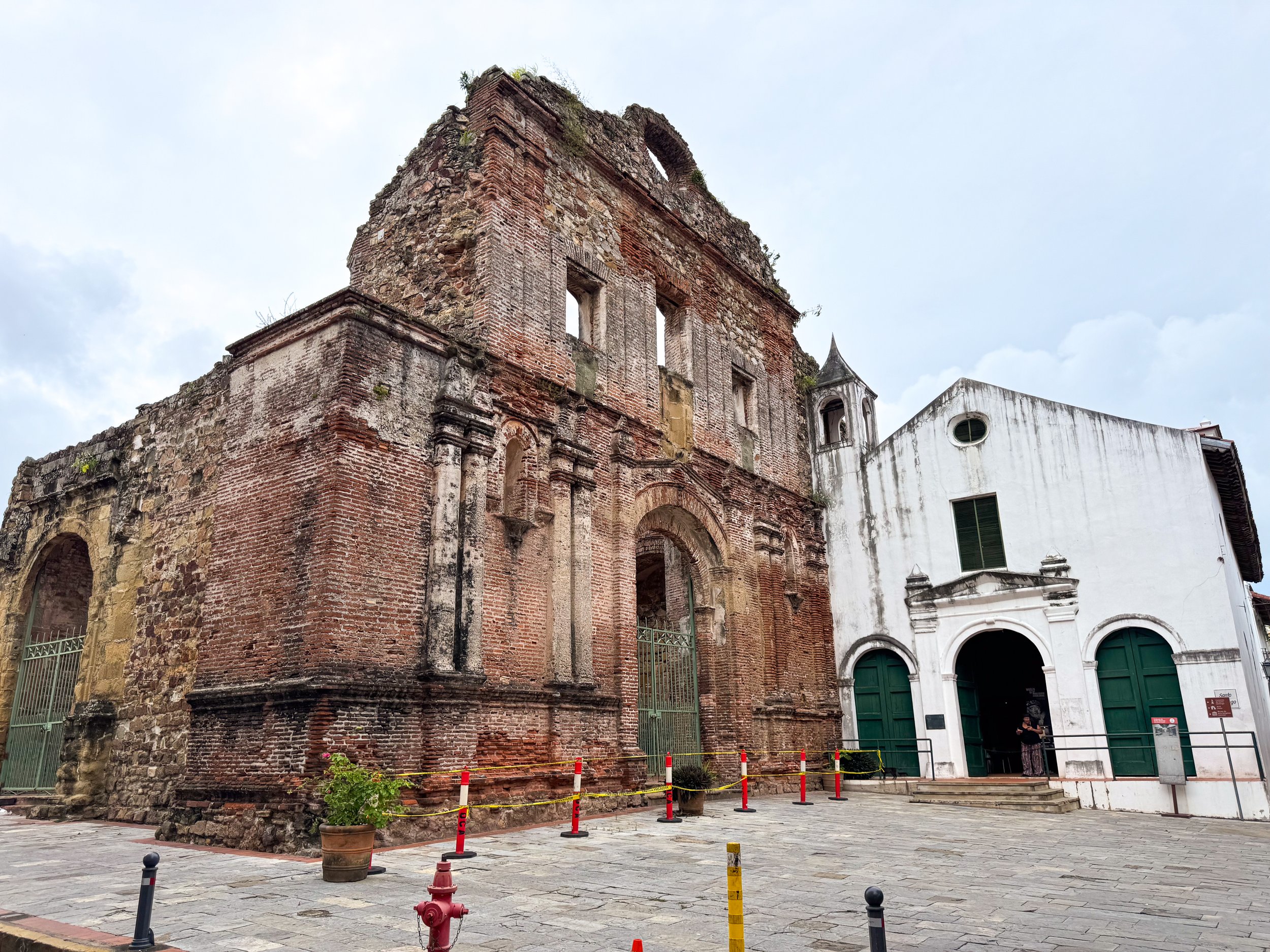
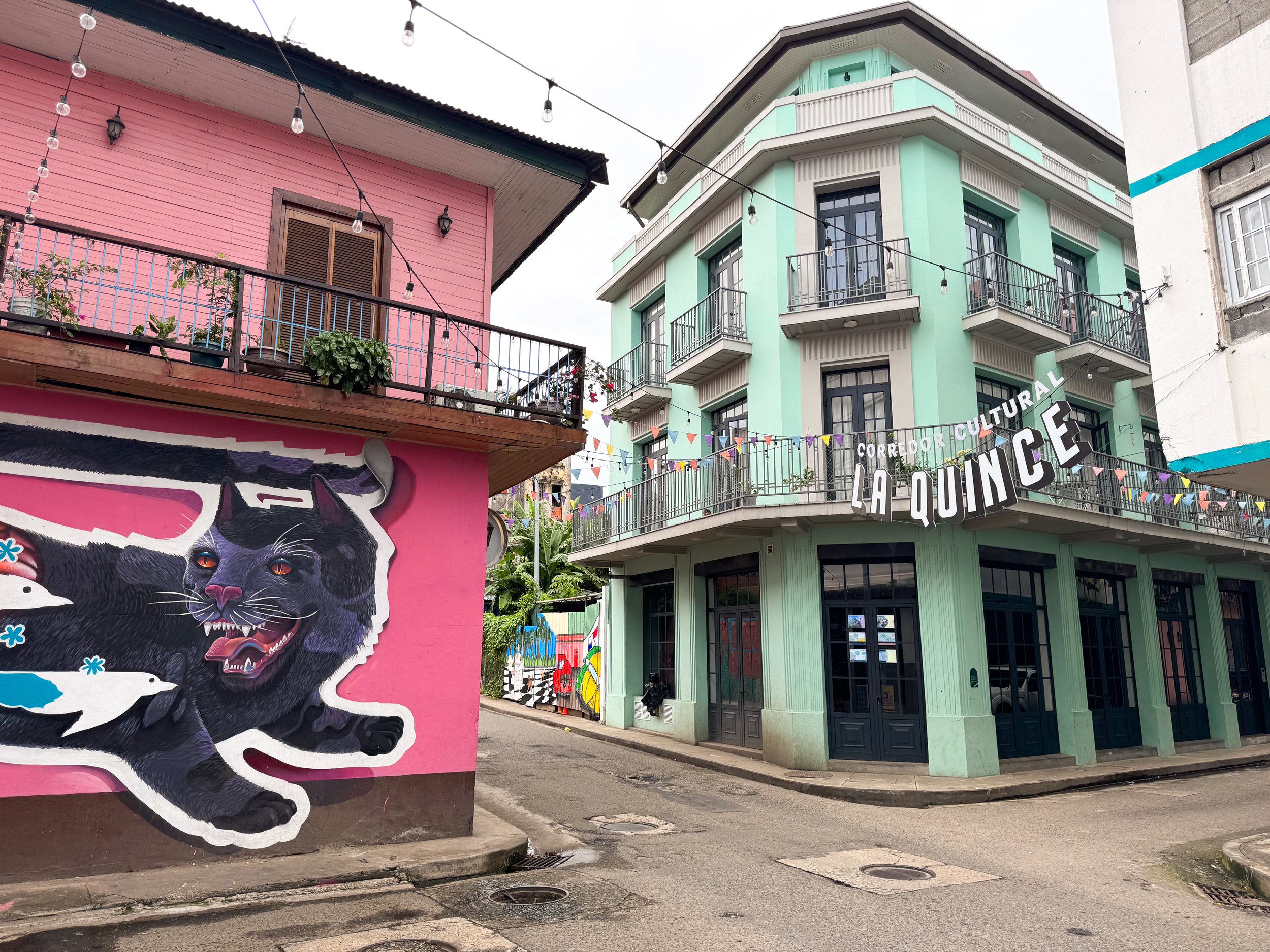
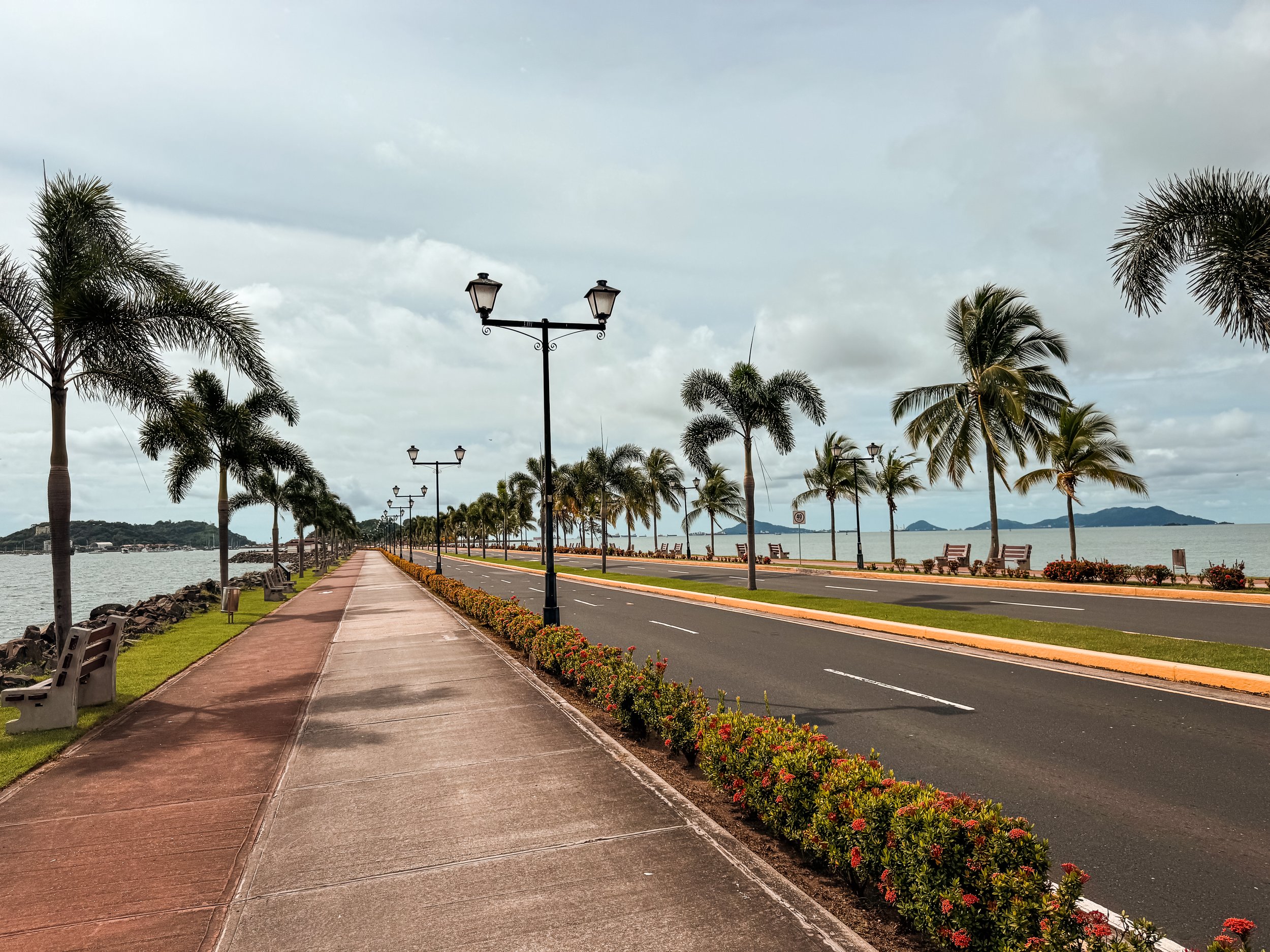
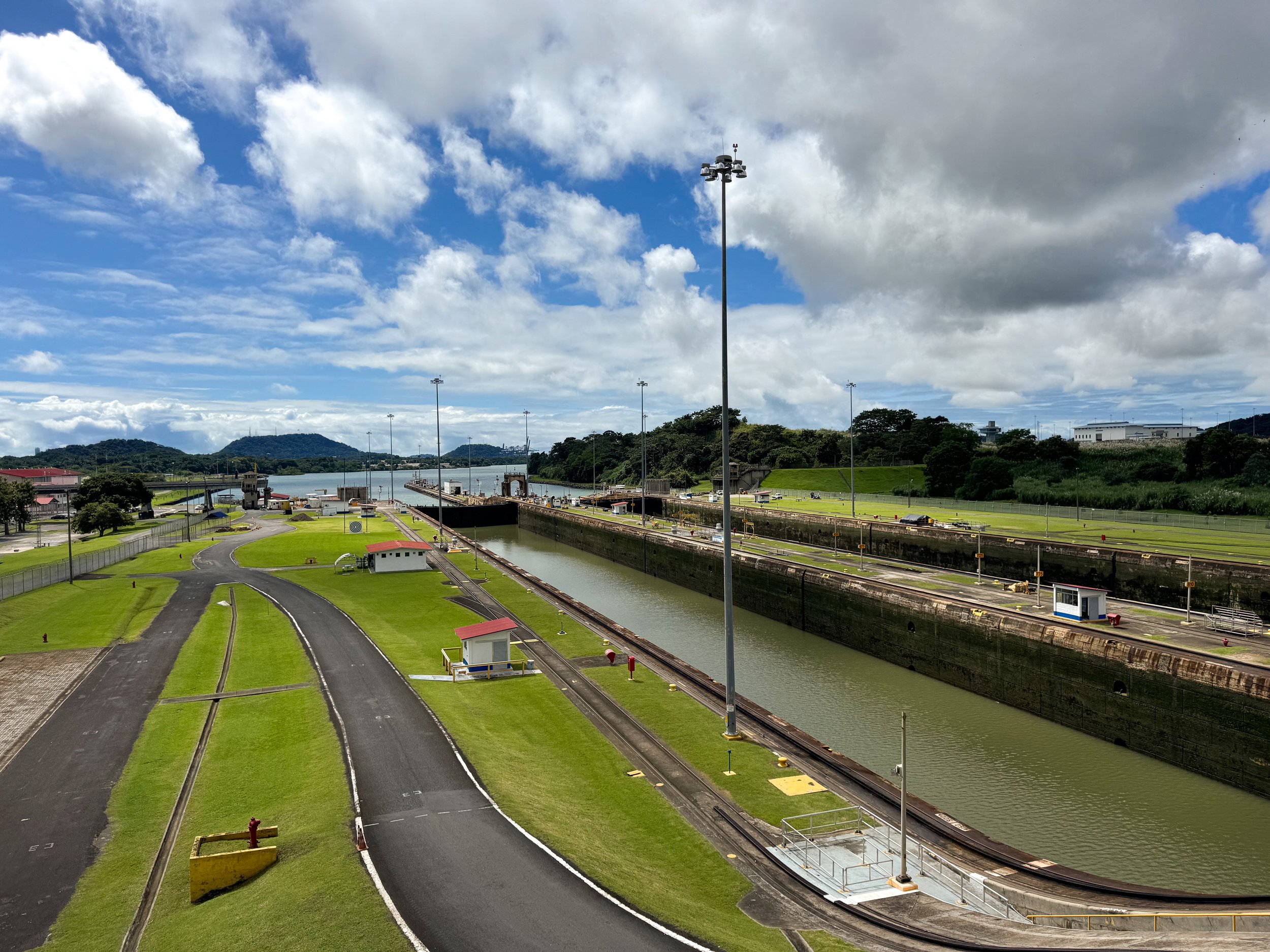
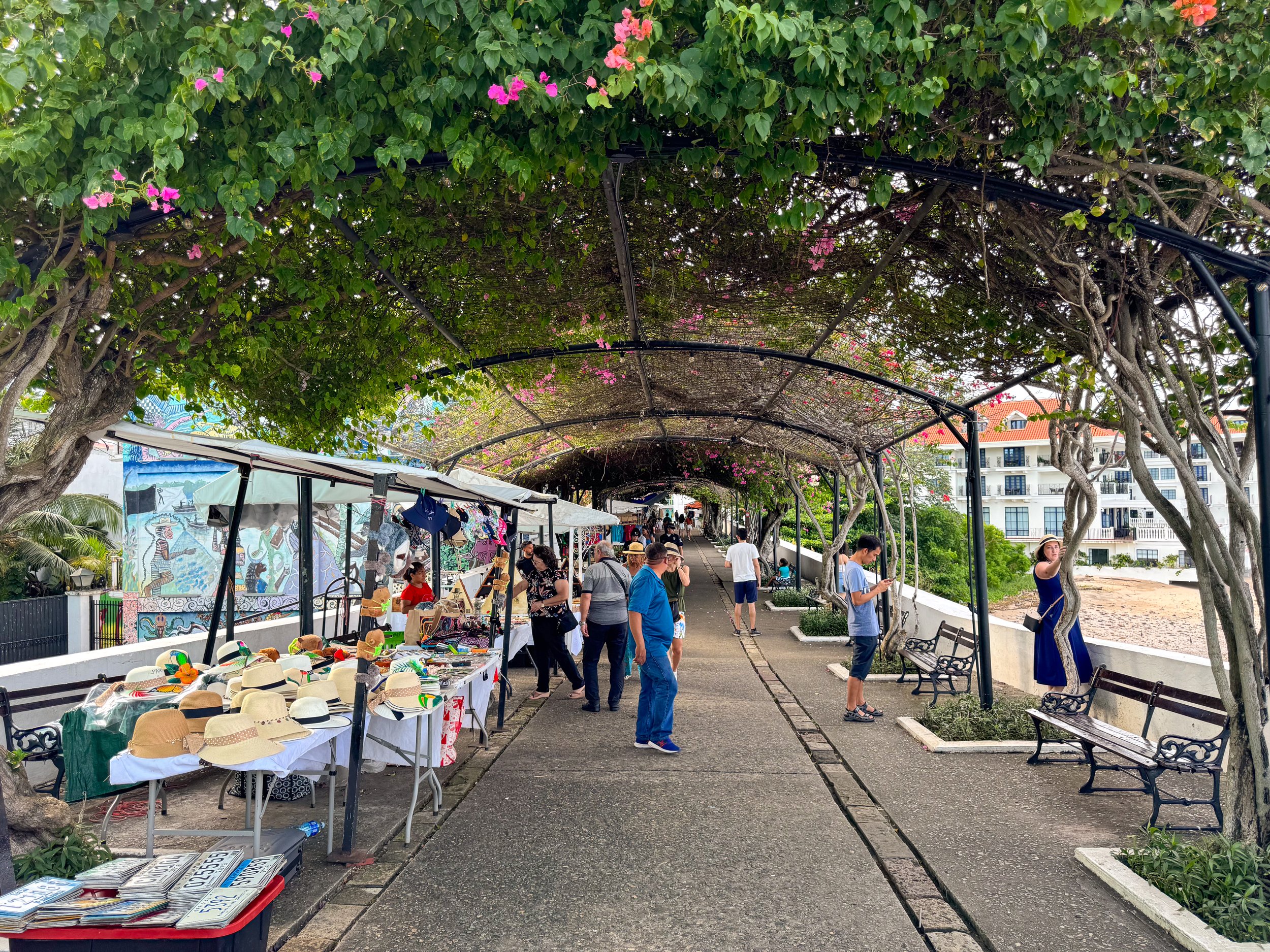
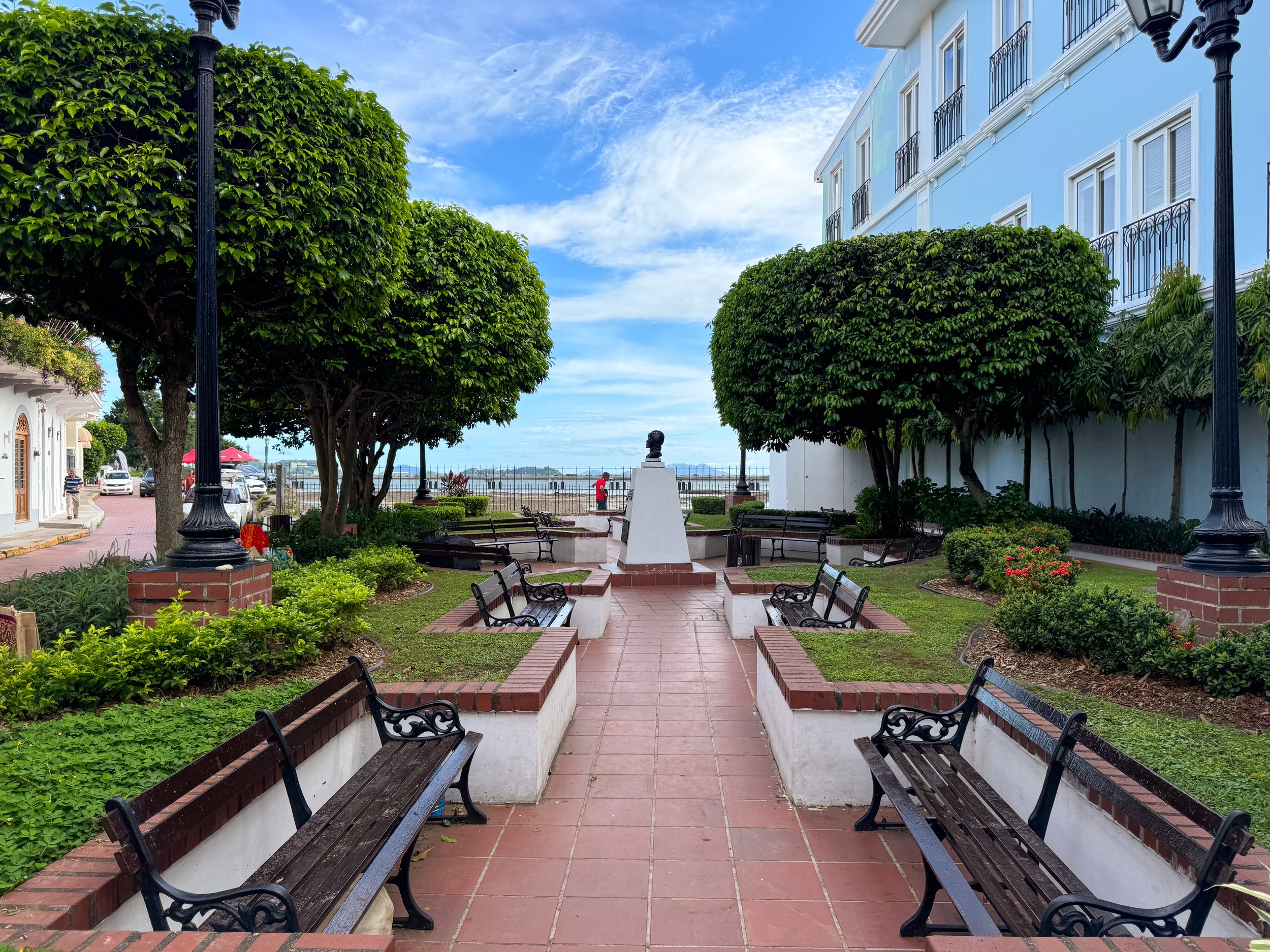
Iglesia de la Compañía de Jesús. The stone and brick ruins of a former church. All that remains is the crumbling facade, walls and interior courtyard
Convento de Santo Domingo. The crumbling brick ruins of a historic convent and church with an adjacent chapel hosing a museum of religious artifacts.
Iglesia Nuestra Señora de La Merced. A stone facade cathedral with two simplistic white bell and clocktowers. We passed by here when the bells were in full swing letting out dongs heard across the old town.
Paseo de las Bovedas. A scenic waterfront walkway along the colonial wall in Casco Viejo. There is a monument dedicated to the history of Panama, views of the modern city and a floral covered walkway with vendors selling handicrafts and souvenirs.
Corridor La Quince. An arts district outside of Casco Viejo with graffiti and murals covering the buildings & string lights draping the streets. Many of the colonial buildings are in disrepair while others have been renovated to modern standards.
Plaza Carlos V. A small garden plaza overlooking the Panama Bay dedicated to one of the first Spanish rulers of Panama credited with the idea of creating the Panama Canal. Guna women often sell their Molas and other handcrafted products from here.
Plaza Medio Baluarte. A small but photogenic plaza with colorful colonial buildings, a central fountain and an overlook along the wall. We watched as artists painted the city scenery early one morning.
Plaza Simón Bolívar. A plaza with a large monument dedicated to Simón Bolívar, the leader who lead several Central and South American countries to independence from Spain. The plaza is flanked by a cathedral and restaurants.
Amador Causeway. A palm lined road and walkway connecting three islands near the mouth of the Panama Canal. Come here to walk the scenic 3km road, watch ship waiting to enter the Panama Canal and admire views of the city skyline. Along the road are bike rentals, restrooms, overlooks and historical placards. Towards the islands are numerous restaurants, hotels, a marina and cruise terminal.
Miraflores Visitor Center. A lock system and lookout on the Panama Canal. Come watch ships pass through, learn about the canal’s history and watch a movie about it narrated by Morgan Freeman.
Good to Know: Plan your visit around when ships pass through the locks. Not knowing that ships pass through at infrequent times, the next one wasn’t for over 3 hours when we visited.
Getting Here: The visitor center is reachable by bus from Albrook Station or taxi. It can take a little over an hour to reach from Casco Viejo by bus or 20min by car.
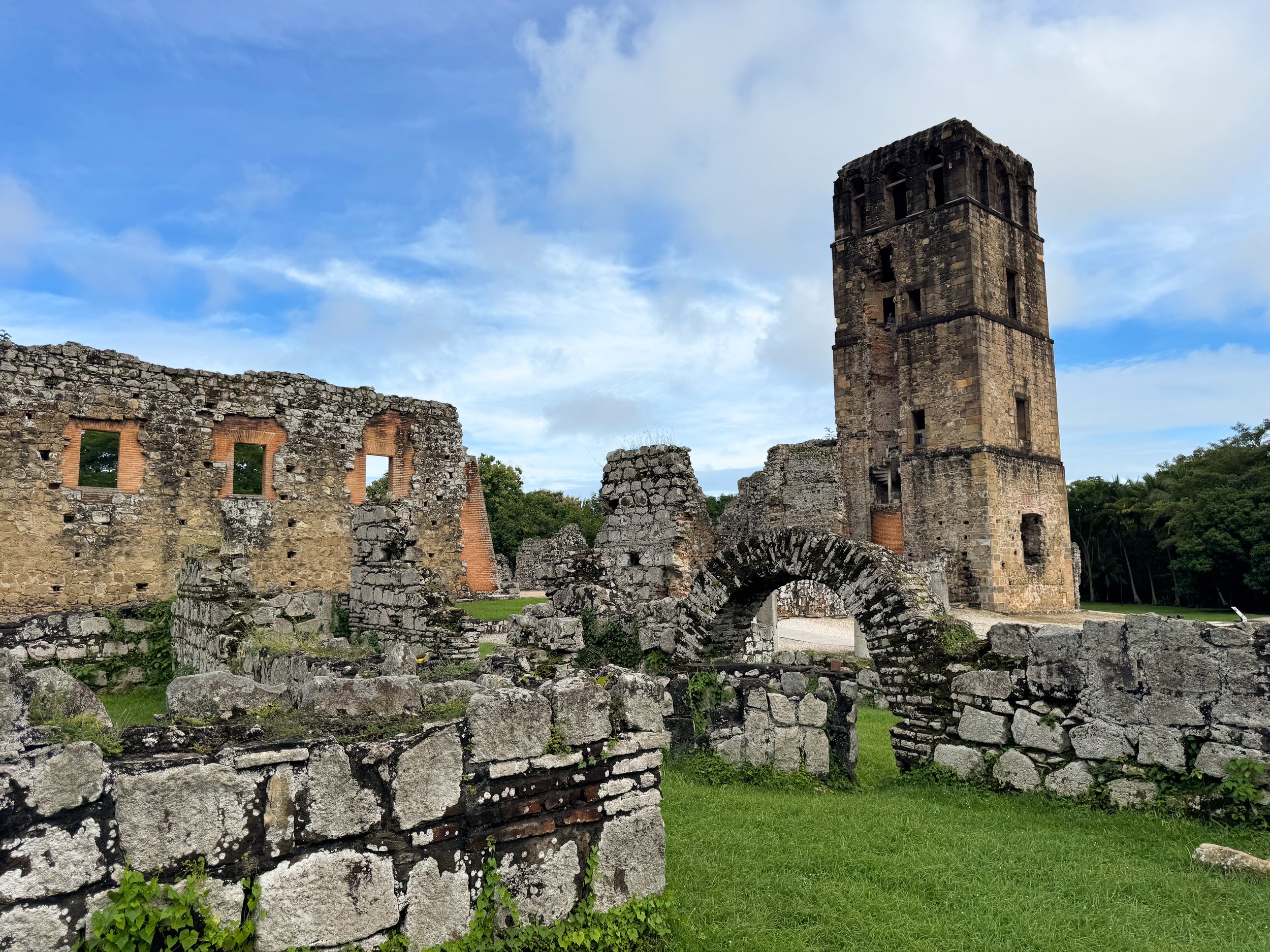
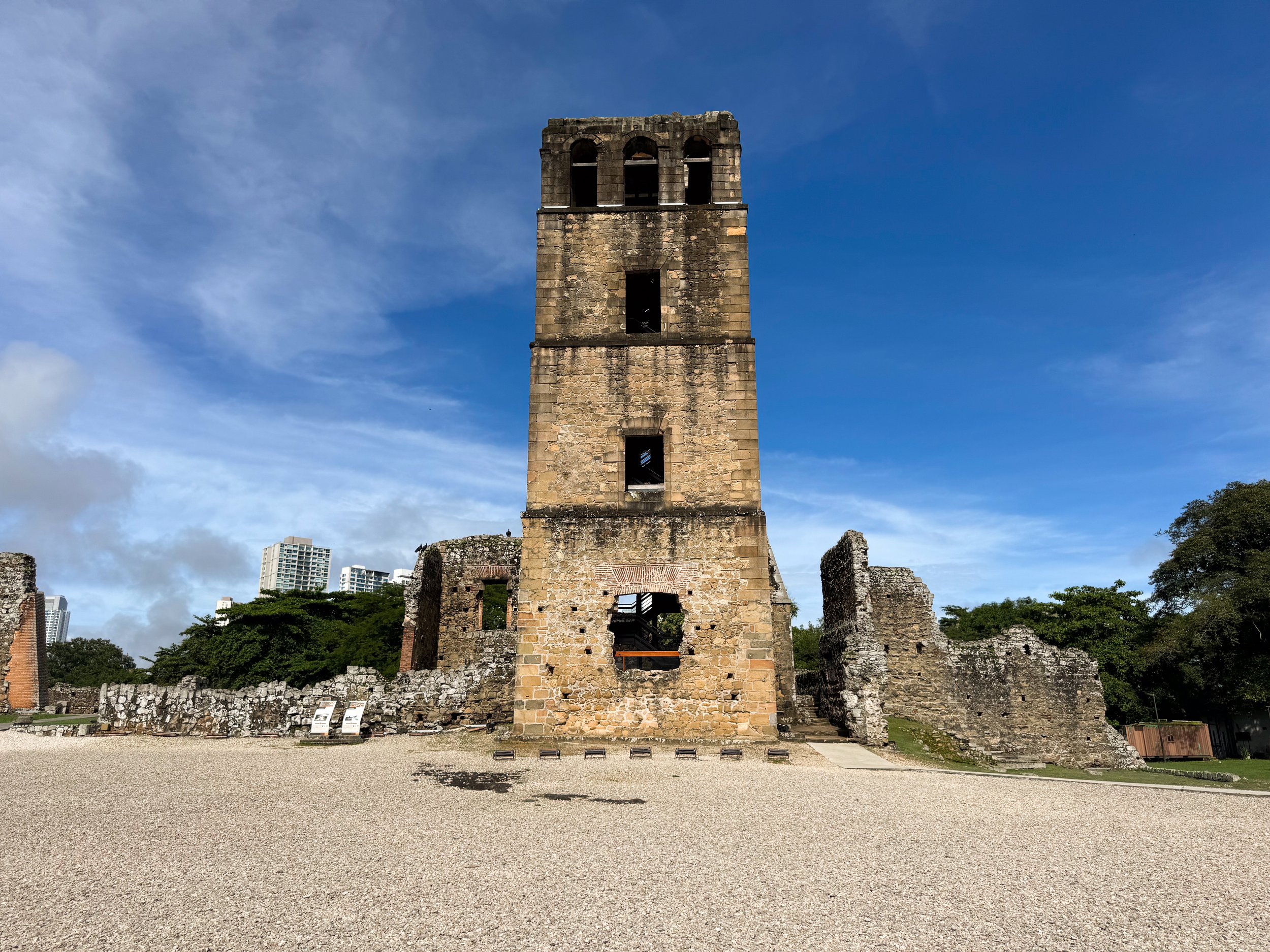
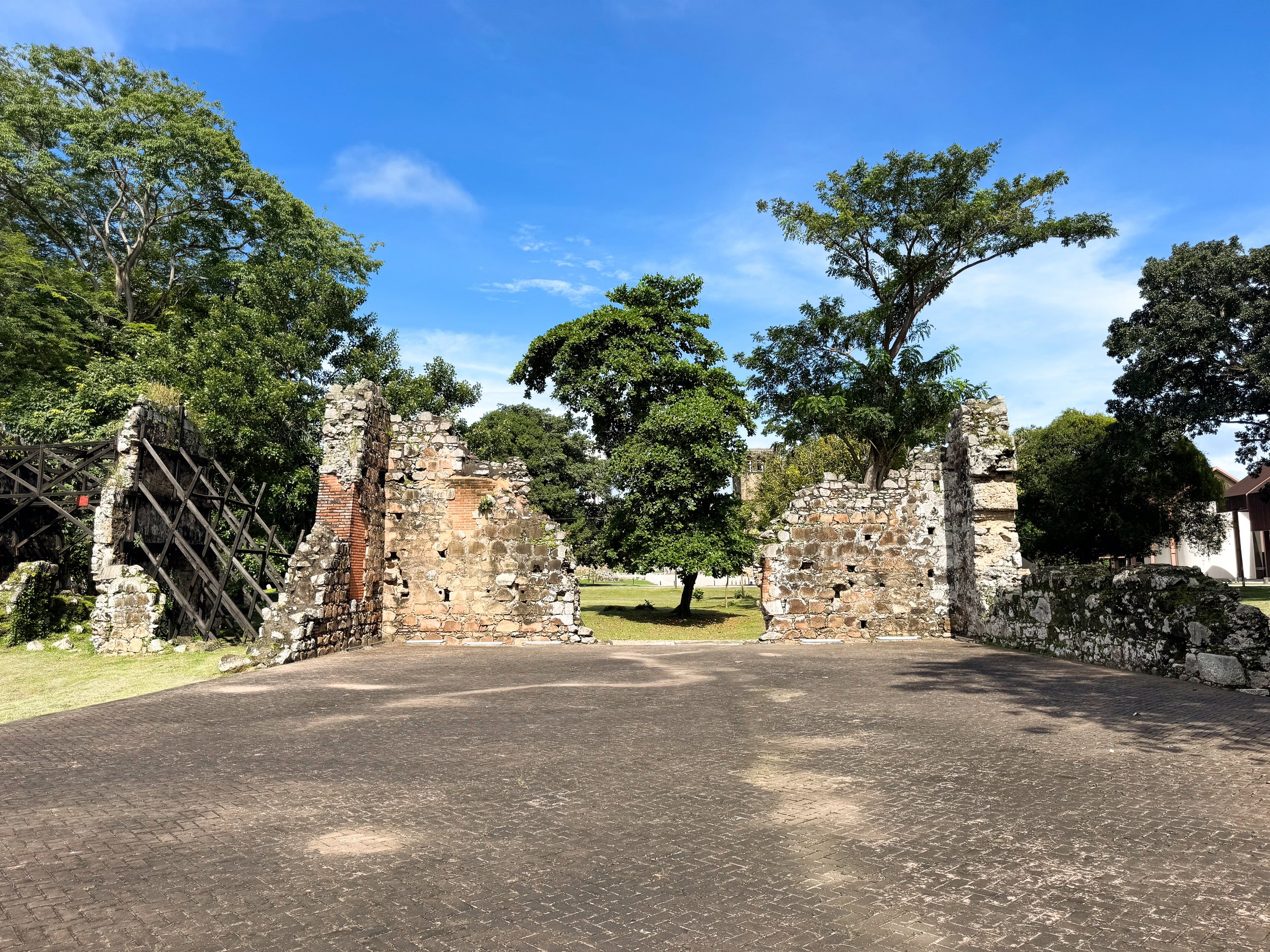
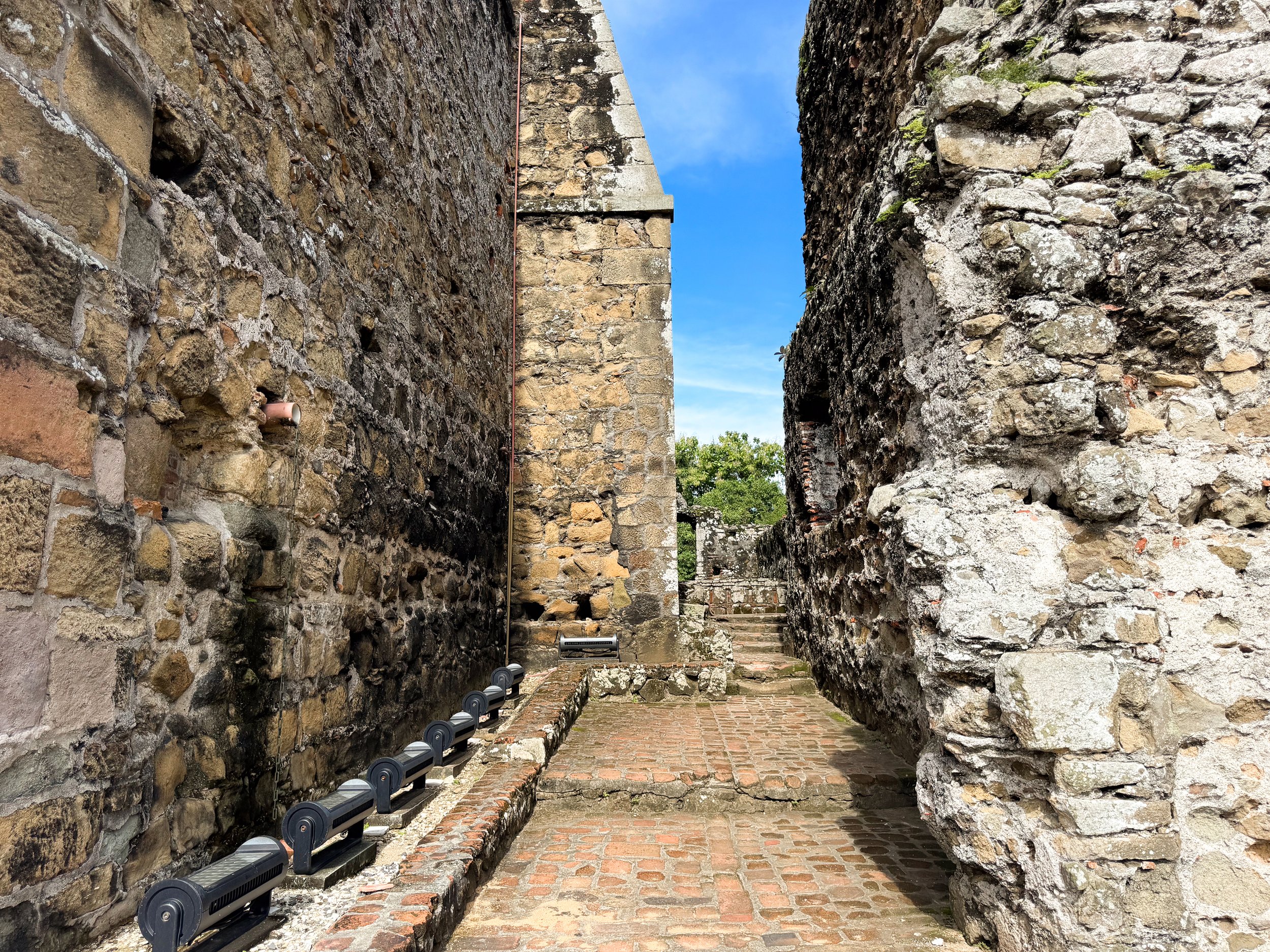
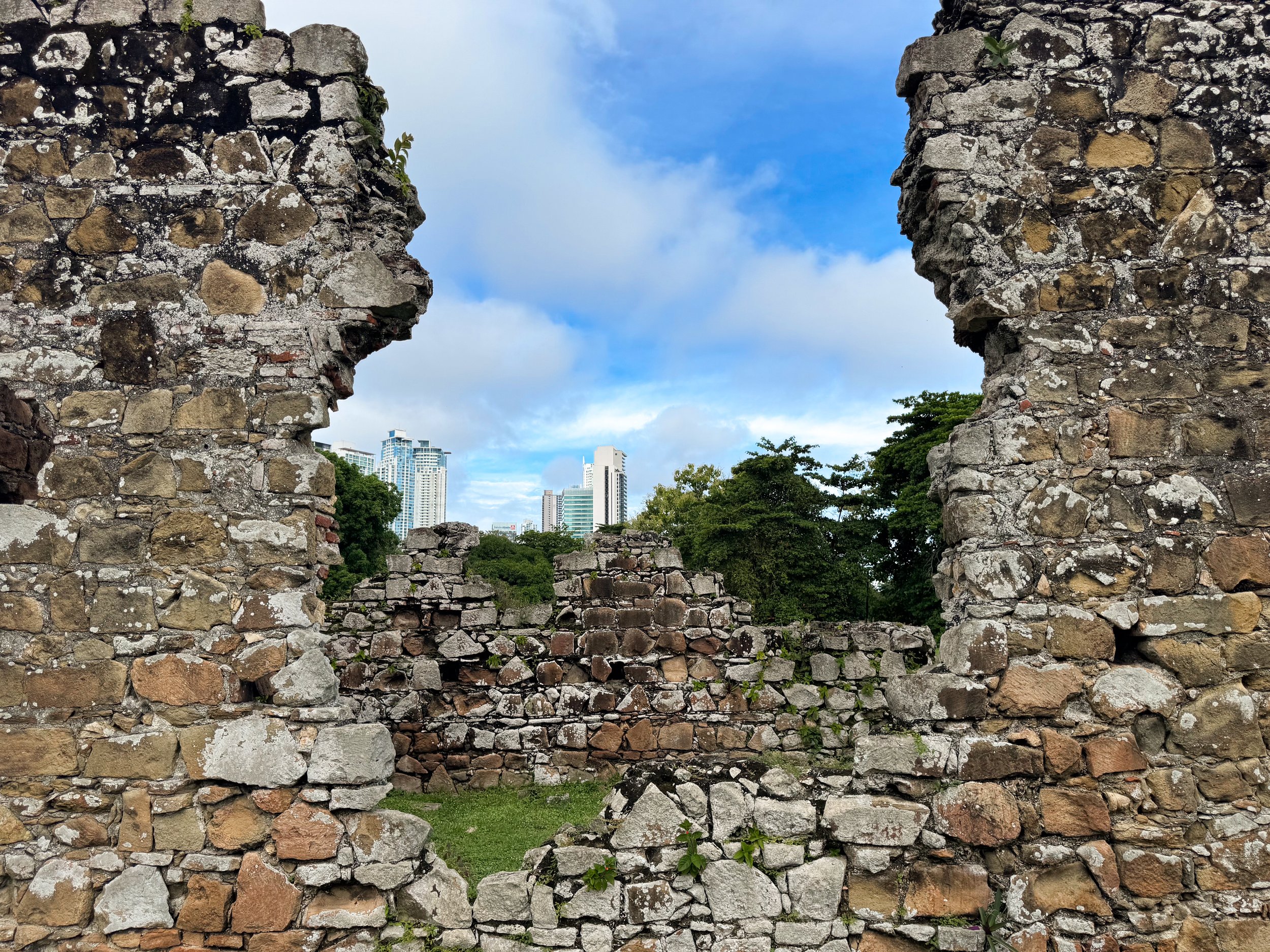
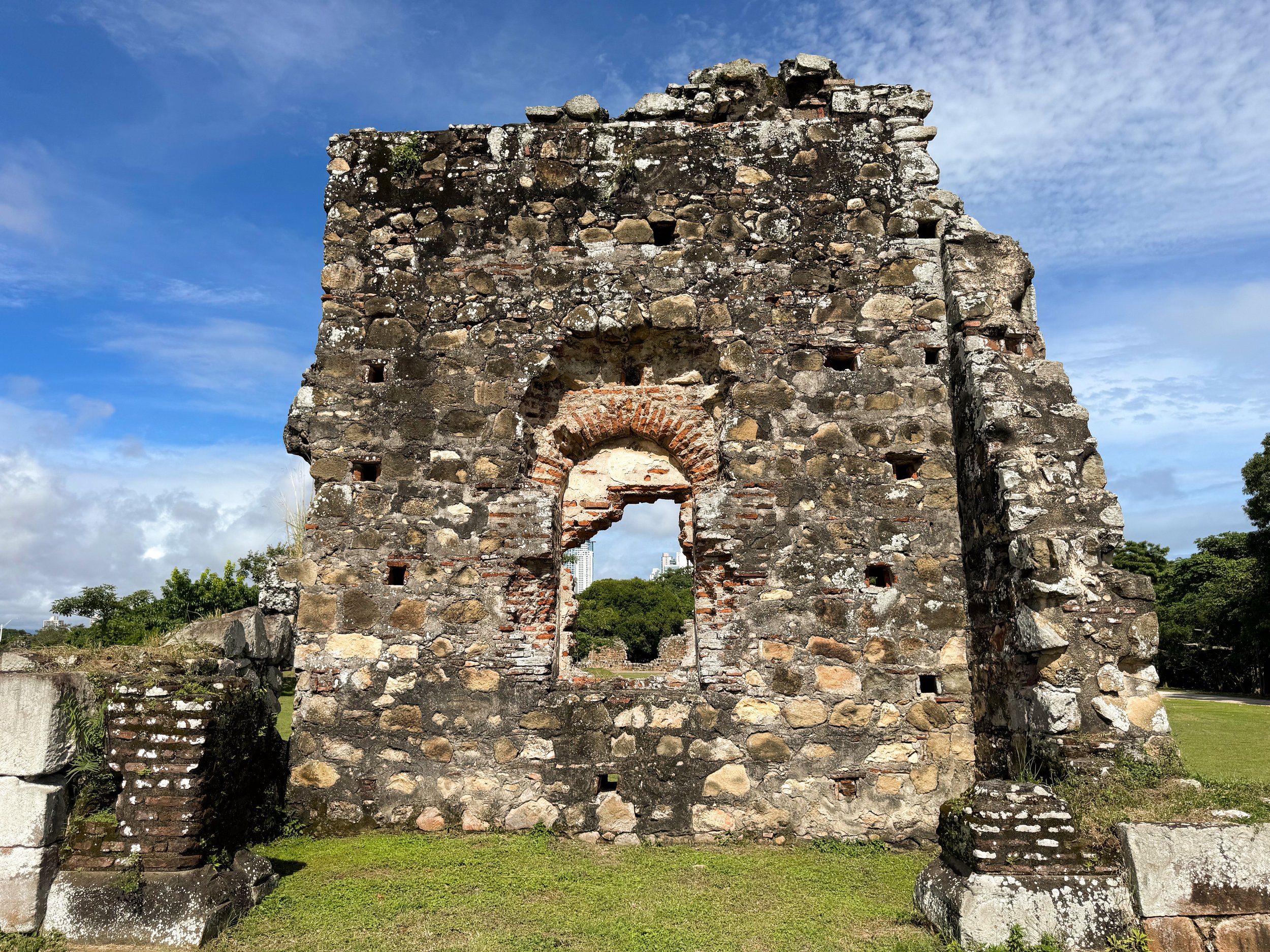

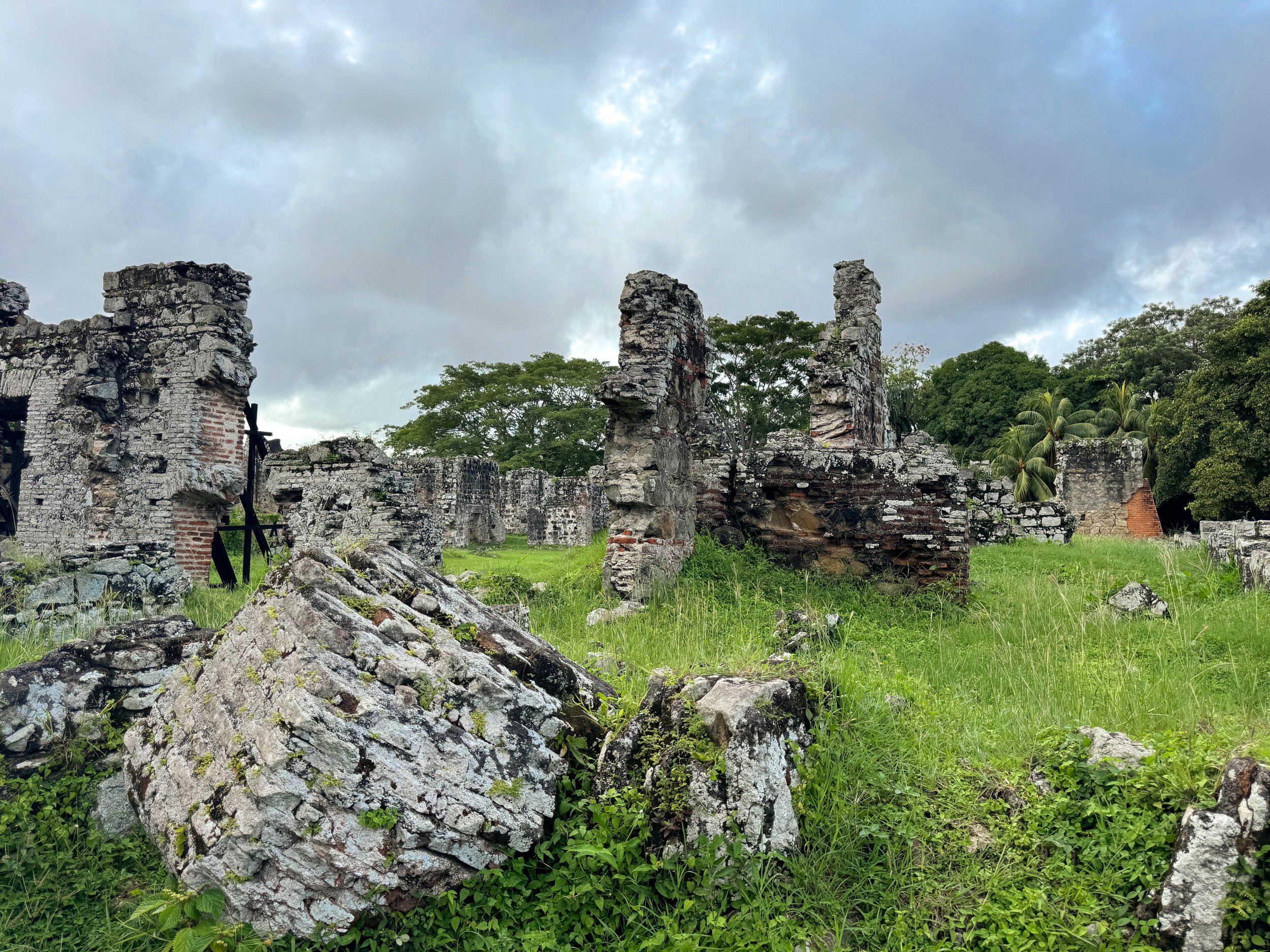


Museums
Panama Viejo. An archeological park with the crumbling brick and stone ruins of the original colonial Panama City. The city had many houses, multiple churches, roads, a grand plaza, market, cistern, bridge and tall bell tower. It was left to ruin after a major earthquake, multiple fires and pirate attacks. Come here to climb the 116 step tower with lookouts over the ruins, modern day skyline and Pacific Ocean. The view offers a unique contrast to the bustling city surrounding it.
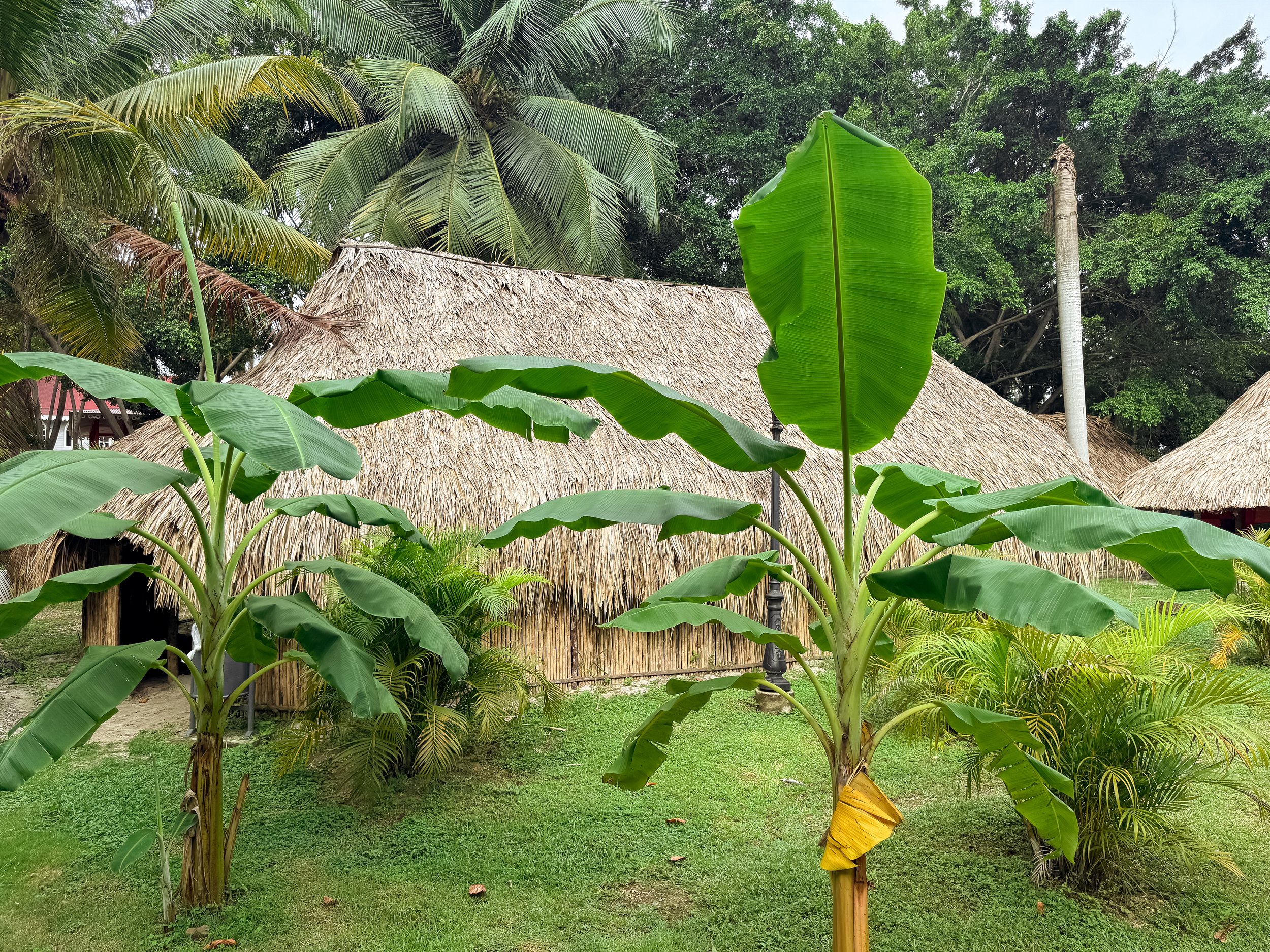
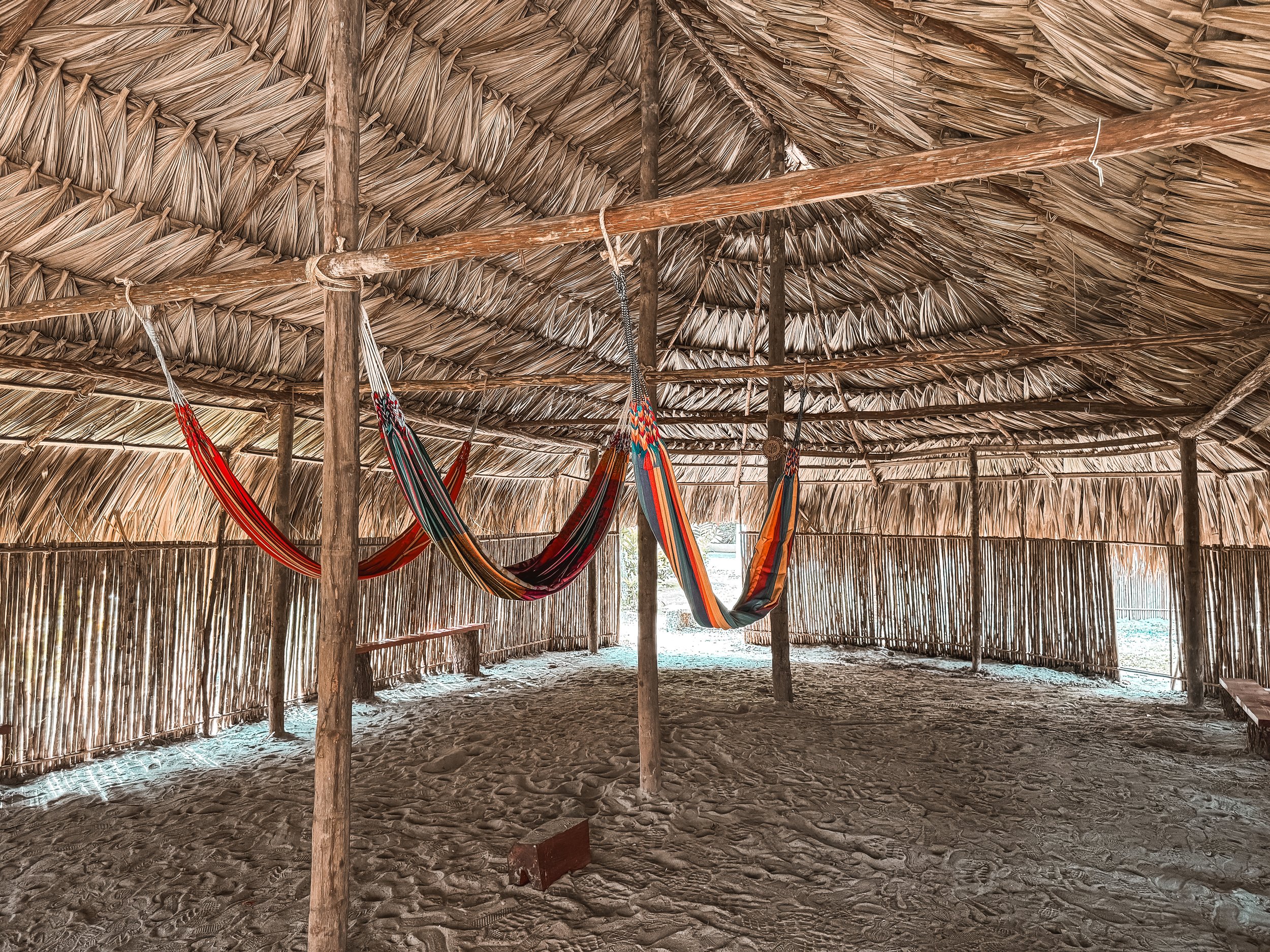
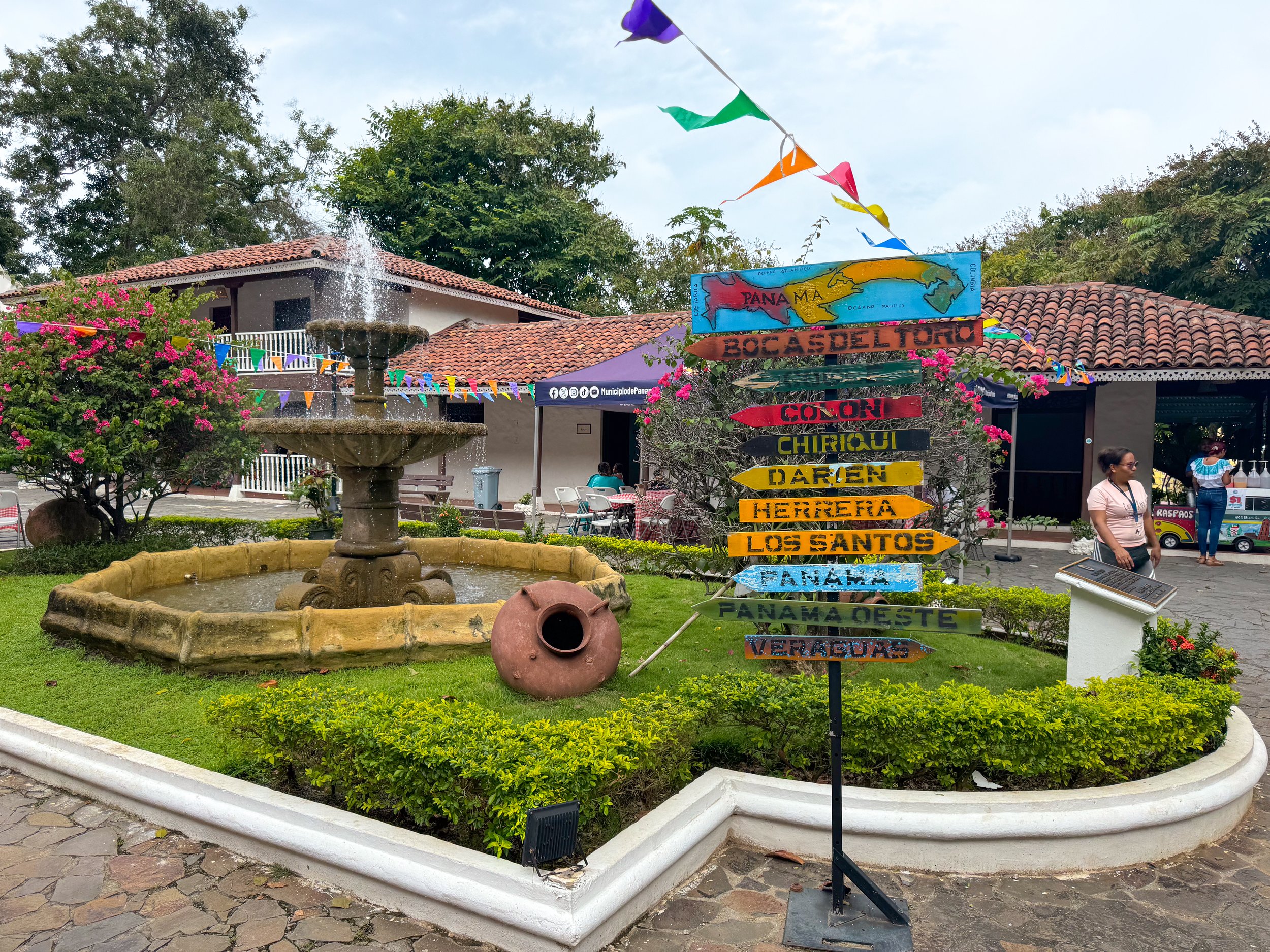
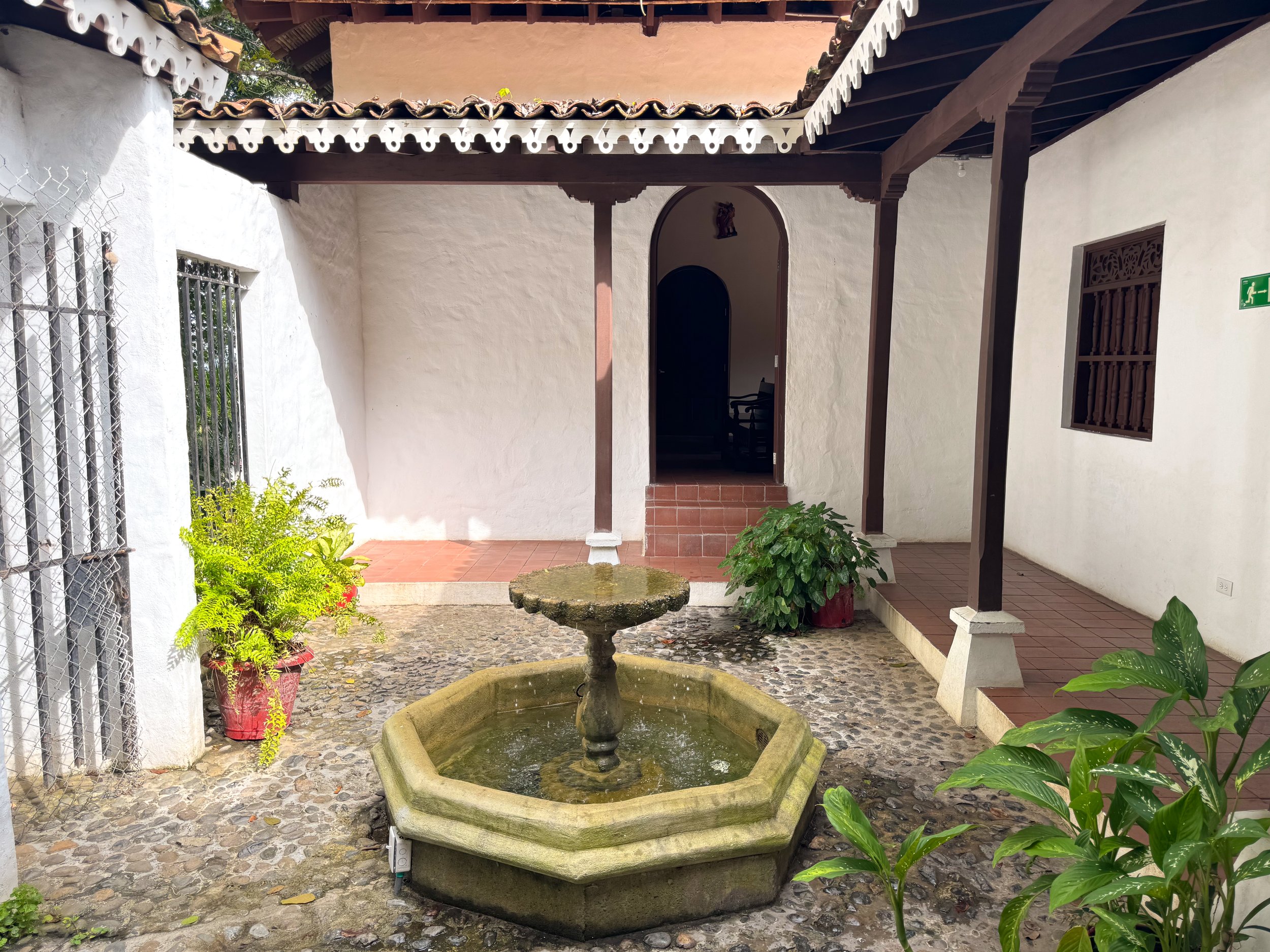
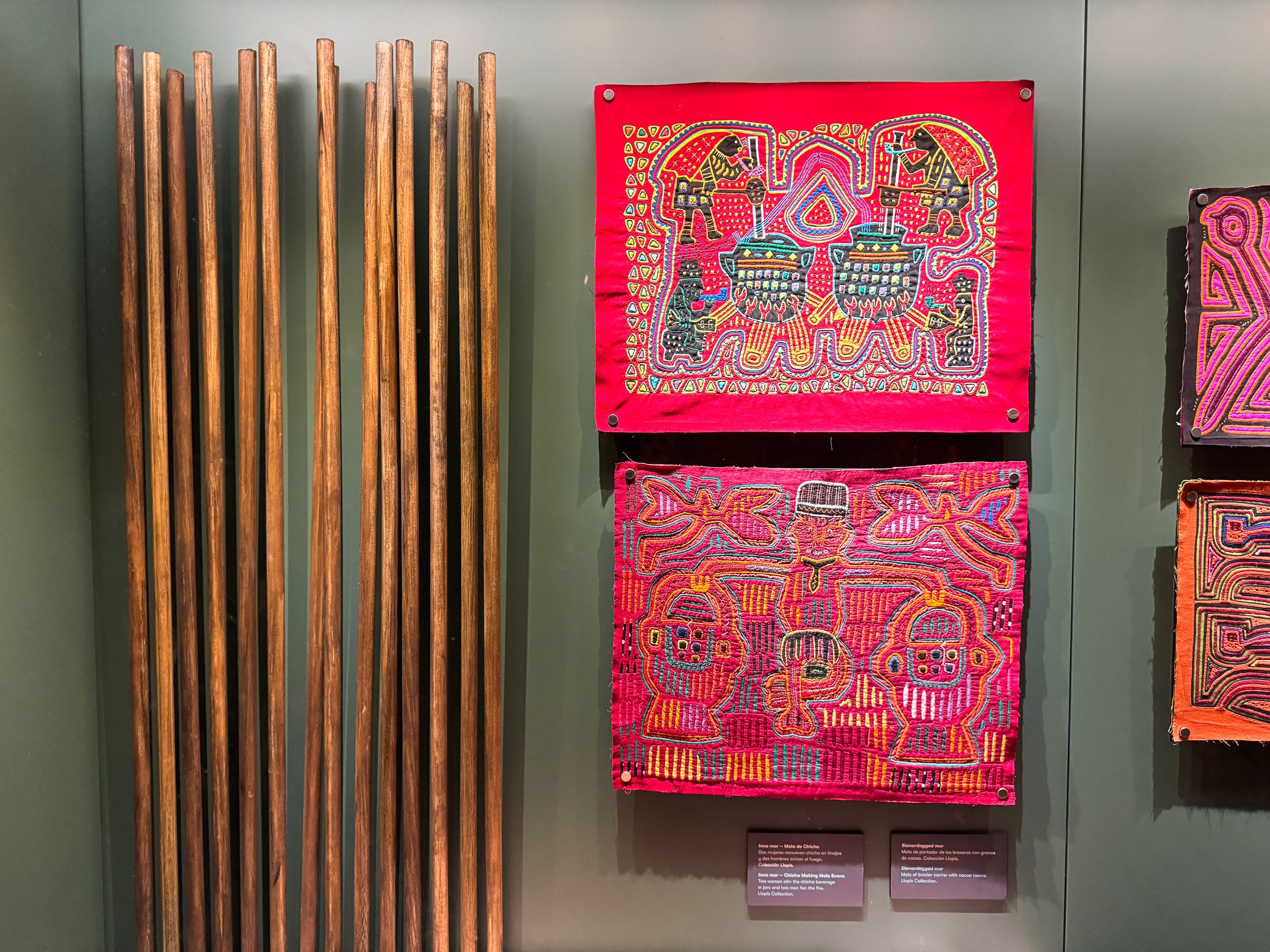
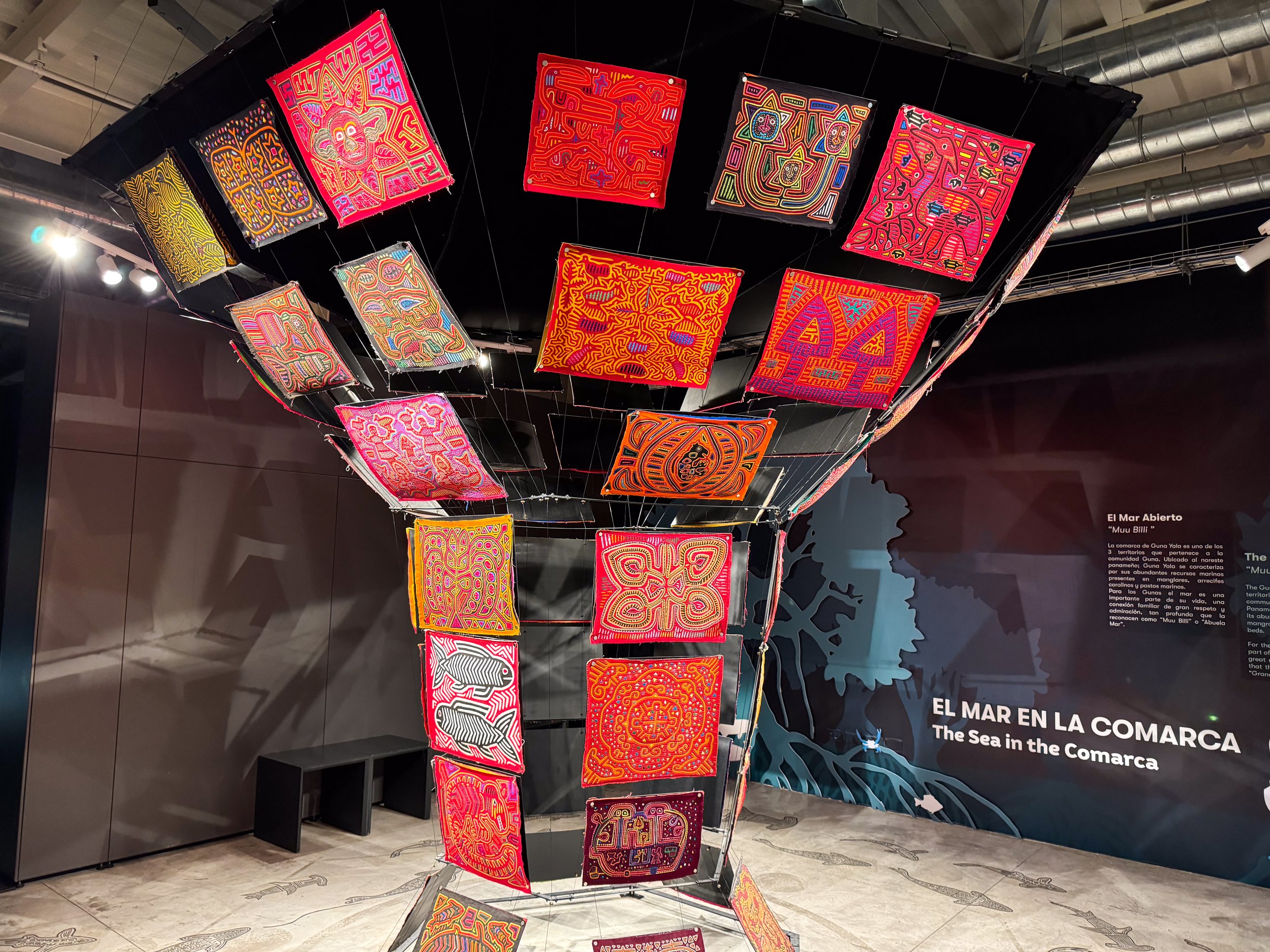
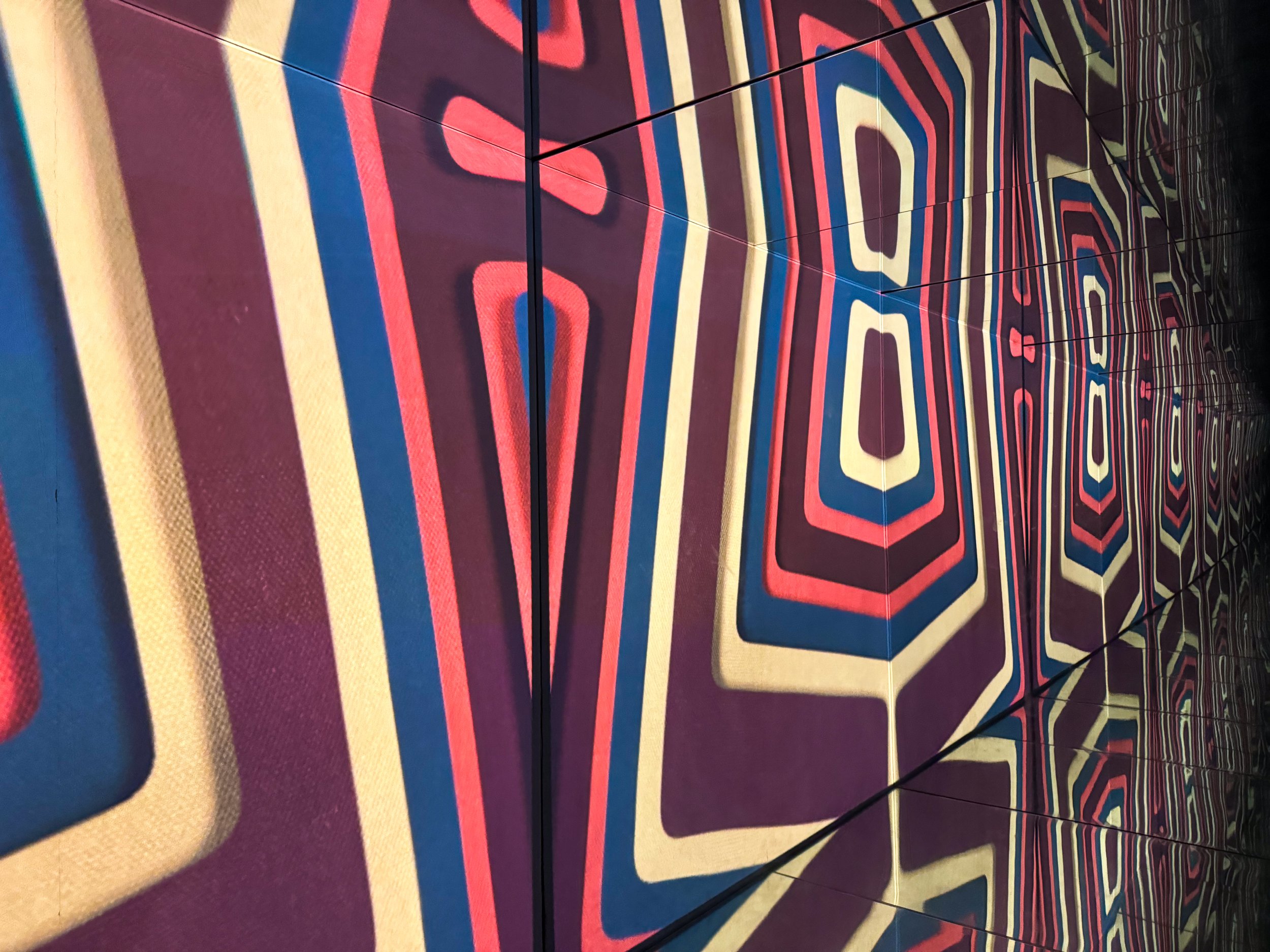
Museo de la Mola. A museum dedicated to the colorful and intricately patterned textiles made by Panama’s indigenous Guna Women. The well curated exhibit explains the cultural importance of the women and their textiles, how they’re handcrafted and the stories behind them. It also features an interactive sound and light exhibit, an origami station and a magnetic wall to add to the museum’s Mola. The museum is free to enter.
Museo de la Historia. A small history museum in Casco Viejo about the founding of Panama and its independence from Spain and Colombia, the diverse cultures that make up Panama and the history of the Panama Canal. Come to see one of Panama’s first ever flags, a constitutional manuscript, and the national anthem. It’s free to enter.
Mi Pueblito. An open air museum set up like small towns with reproductions of colonial buildings and a nature trail with reproductions of thatched structures from Panama’s indigenous tribes. When we visited, there were many food vendors set up selling local and local dishes and snacks.
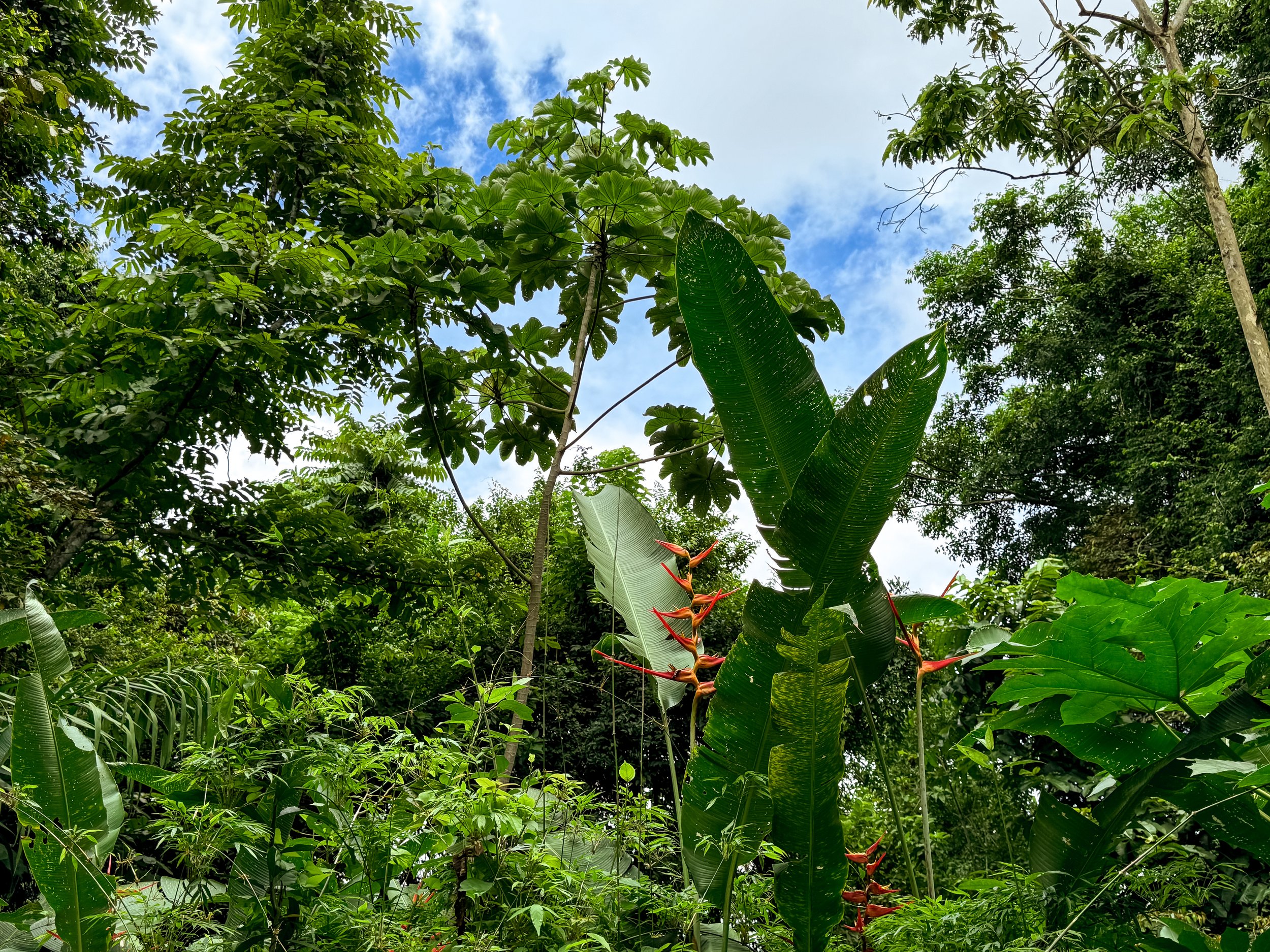
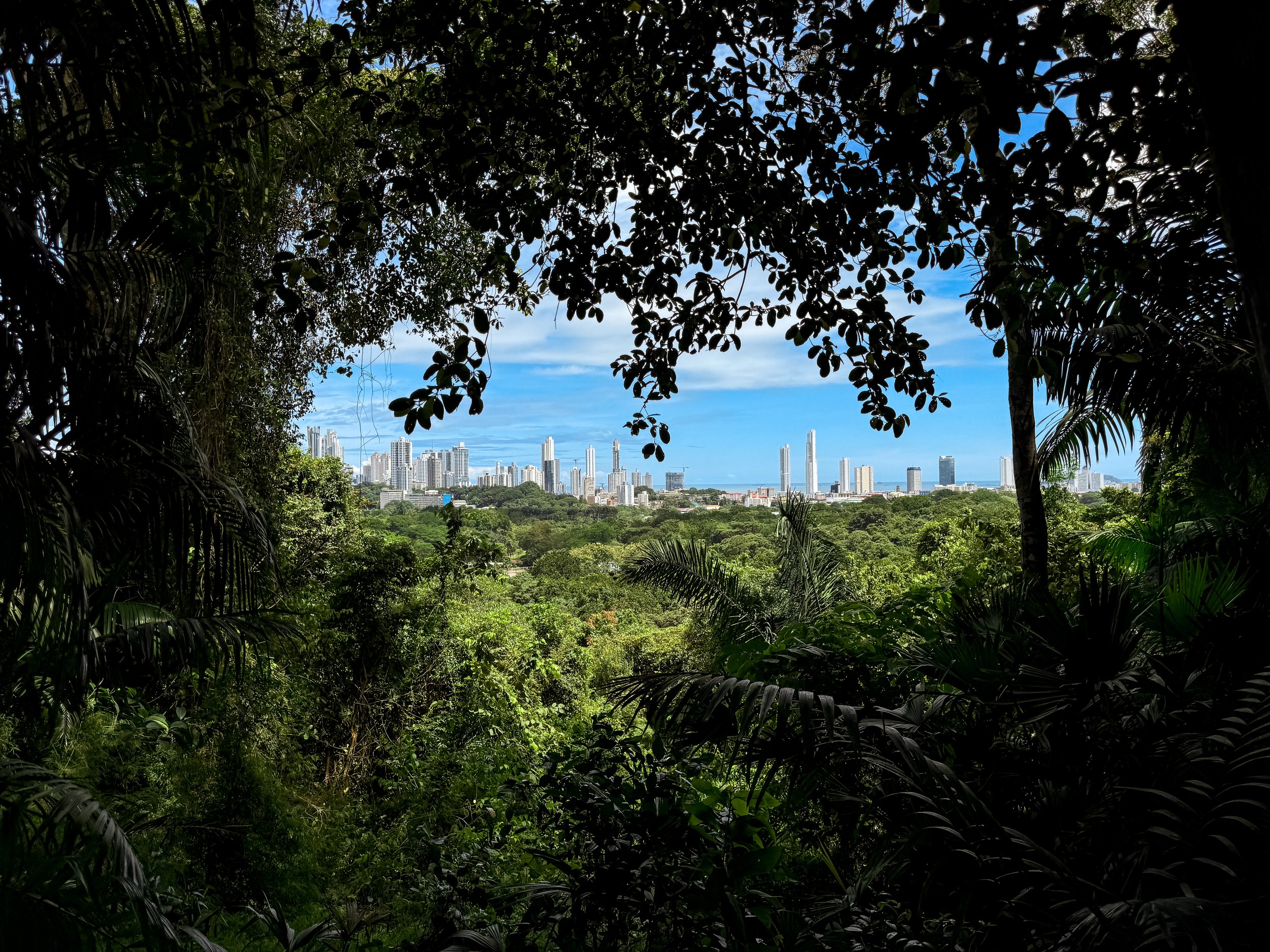
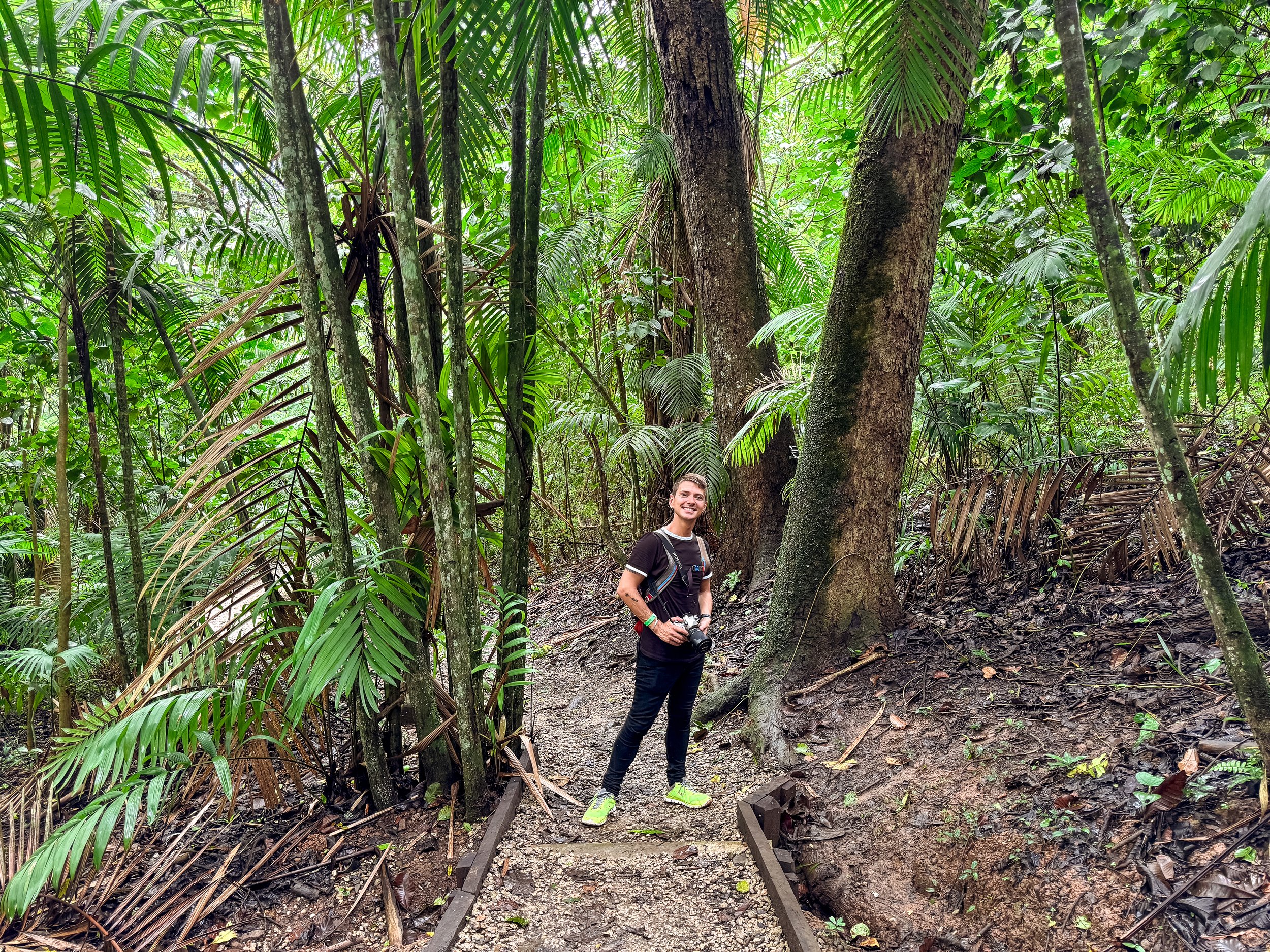
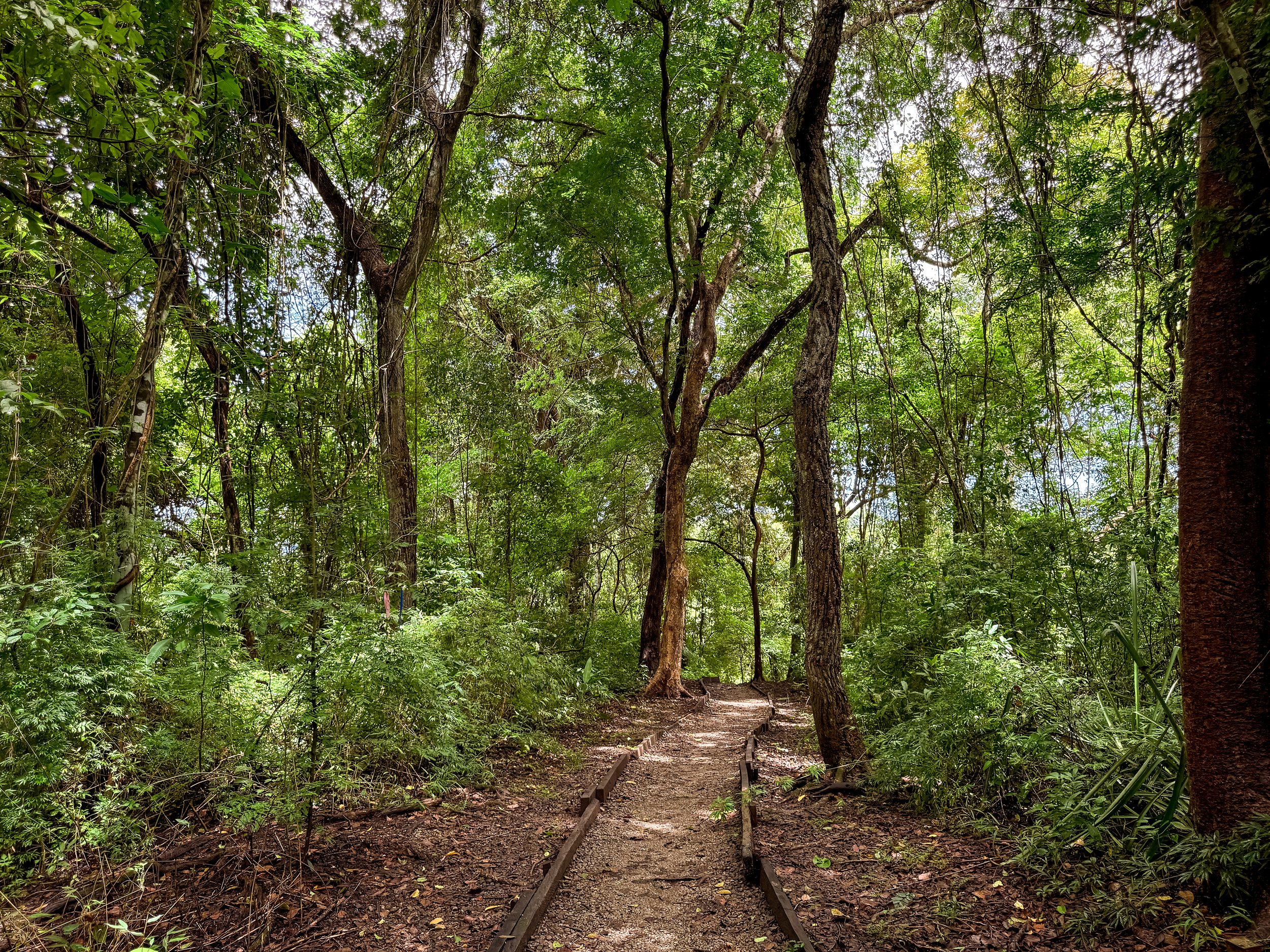
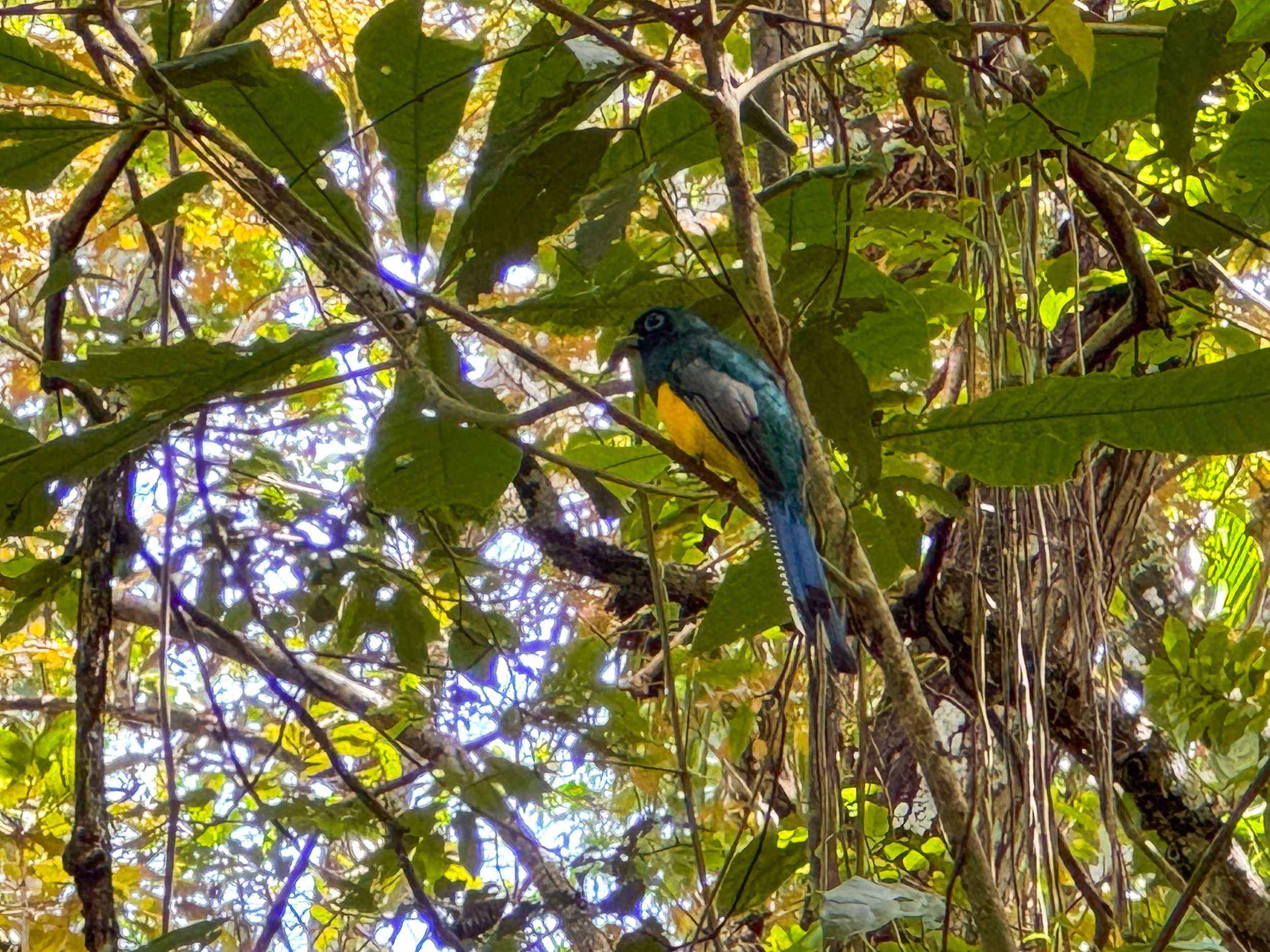
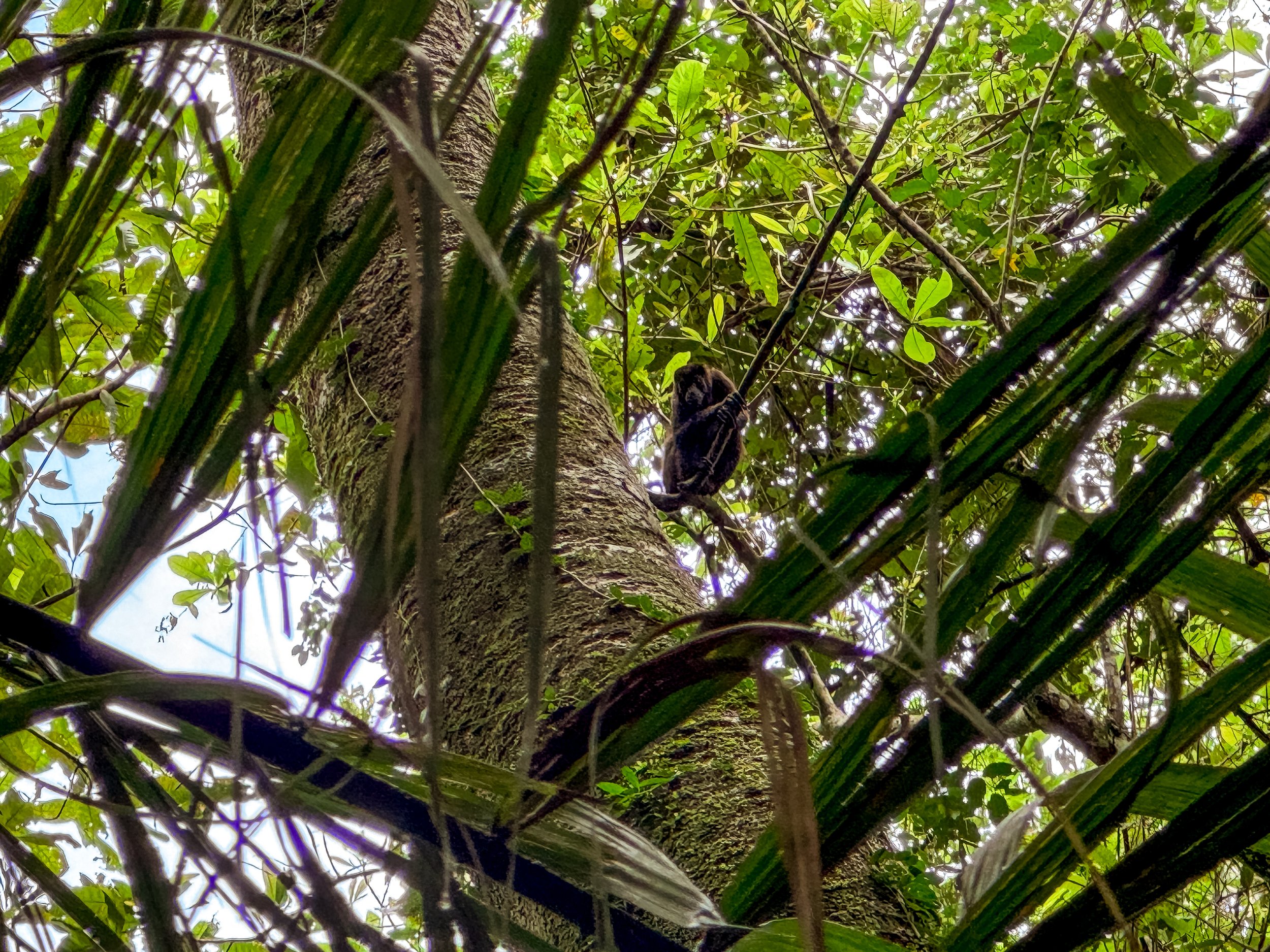
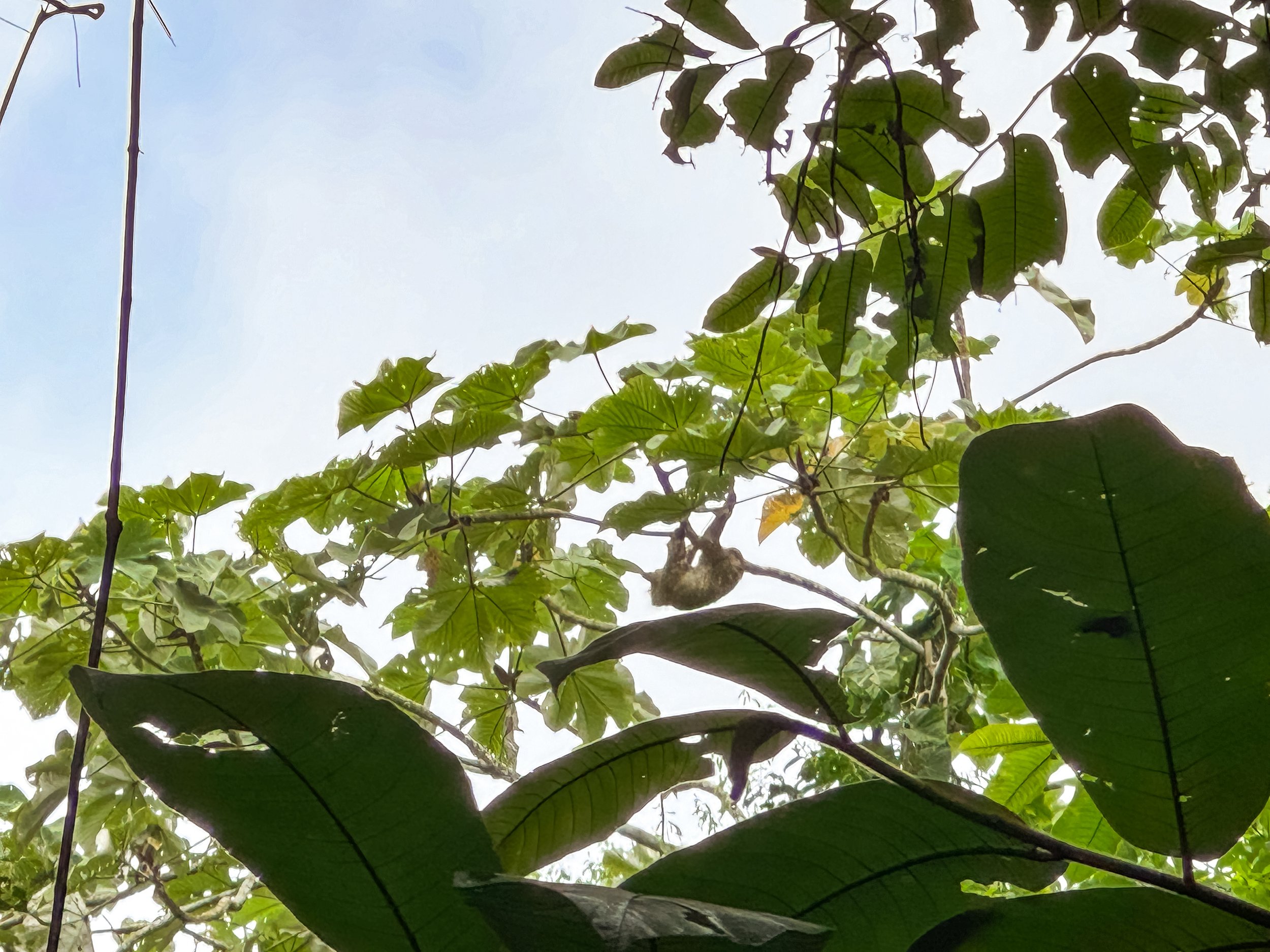
Parks
Parque Natural Metropolitano. A tropical nature park with hiking trails and scenic overlooks of Panama City’s skyline. Come here to spot monkeys, sloths, agoutis and humming birds. We spent over 3 hours walking the trails and spotting wildlife through our binoculars.
Trails
El Roble. A 0.7km trail and road leading from the visitor center to the Mono Titi trail
Camino de Mono Titi. A 1.2km trail through the forest ending with views of Panama City’s skyline.
La Cienaguita. A 1.1km trail through the lush forest leading from end of the Mono Titi trail back to the El Roble trail.
Los Caobos. A 0.8km trail branding off of the El Roble trail and ending at the Visitor Center. This trail passed through dense forest where we spotted monkeys, a sloth and agouti.
Getting Here: The park is reachable by bus one stop on the bus from Albrook Station. It can take a little over an hour to reach from Casco Viejo.
Cerro Ancon. A paved nature trail leading from Mi Pueblito to the city’s tallest natural point. Come here to overlook Casco Viejo, the city’s modern skyscrapers and ships passing through the Panama Canal.
Soberania National Park. A large national park in the center of the country located along the Panama Canal. We came here hoping to hike, spot wildlife and watch ships on the Canal.
Unfortunately after hours of trying to reach certain sights in the park via bus, on foot and Uber, we learned many of the park’s activities are run by private resorts with high ticket prices, require advance reservation or are inaccessible. Tired and a little defeated, we decided to return to Panama City and make the most of our day.
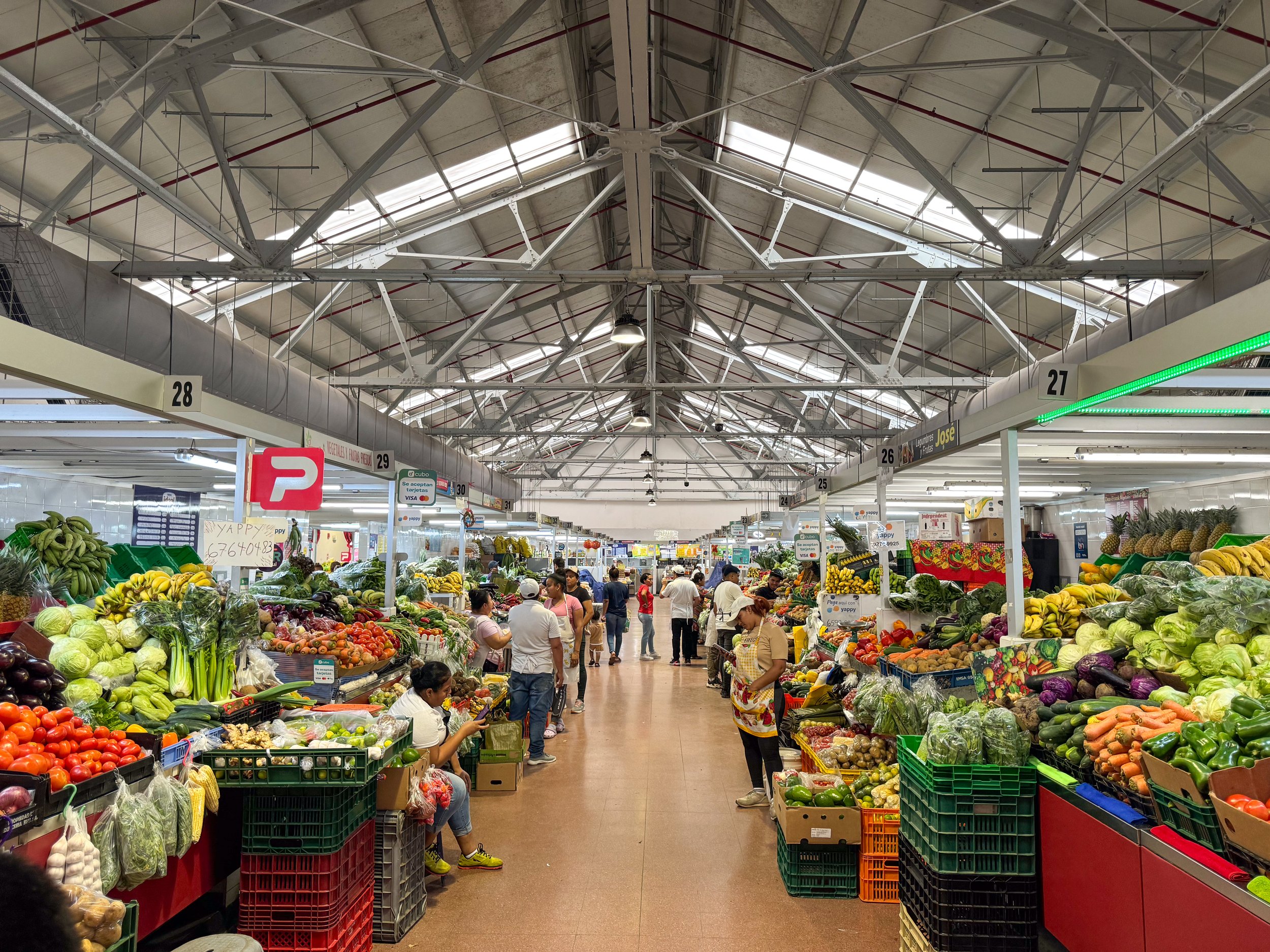
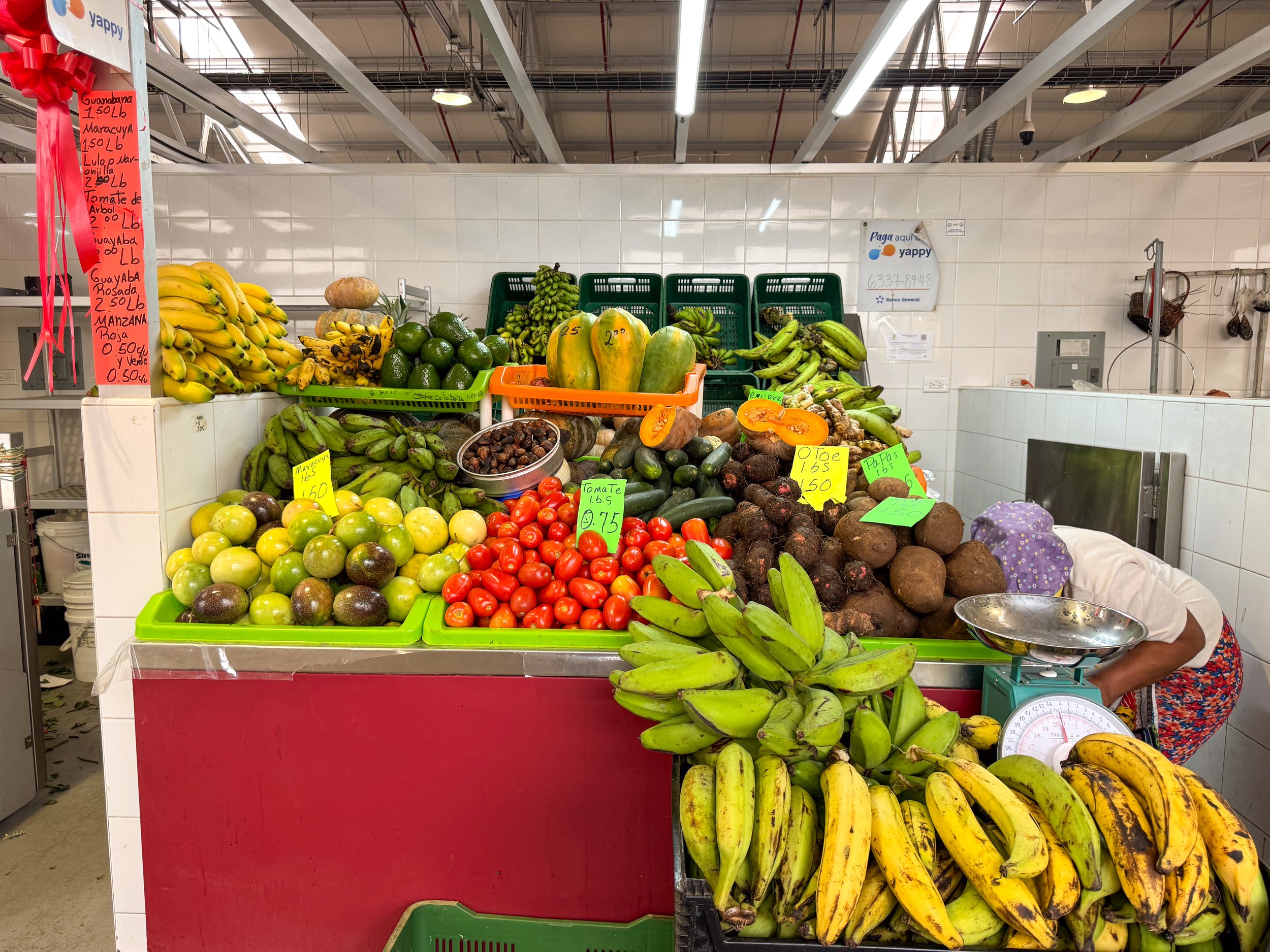
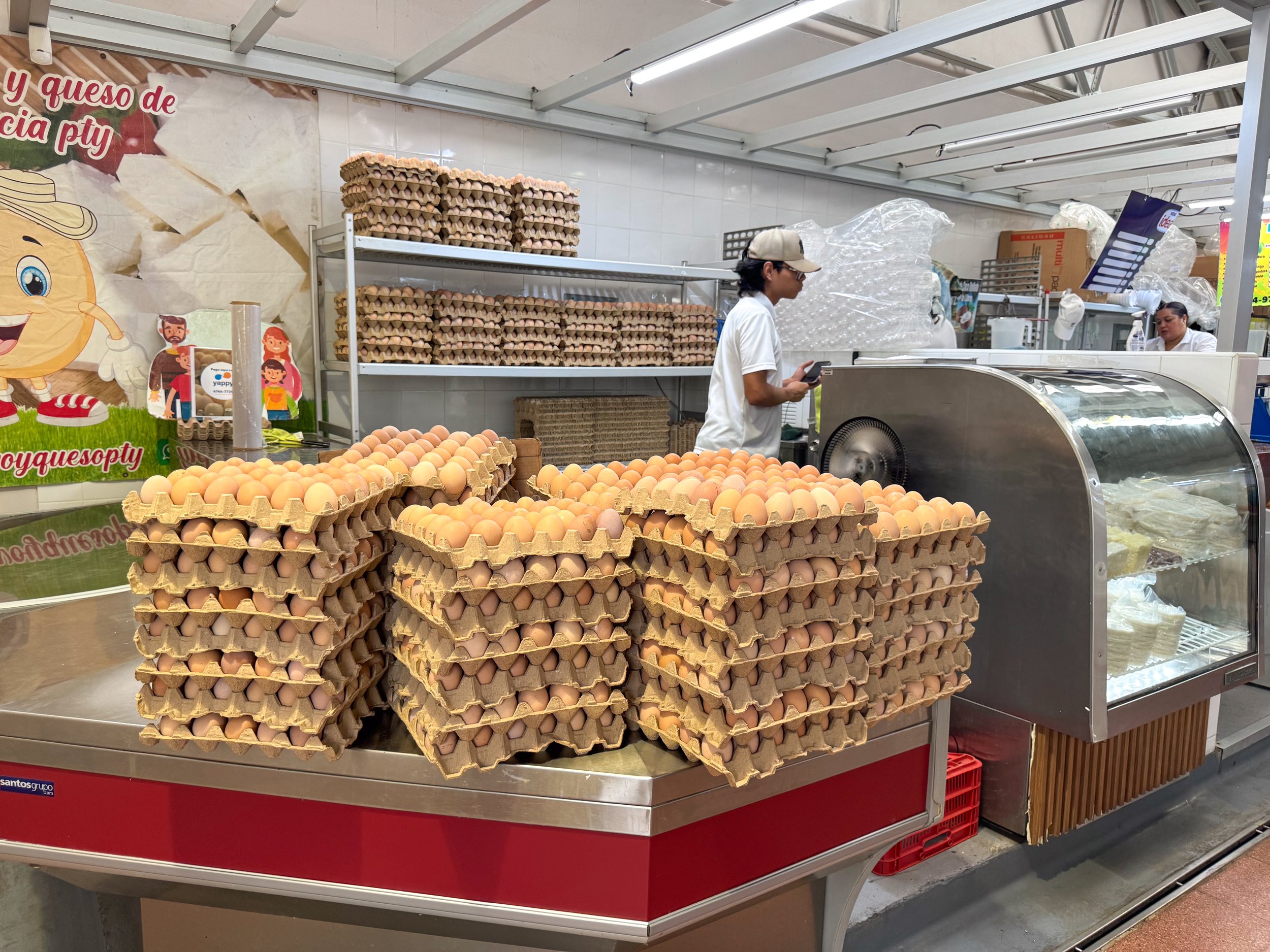
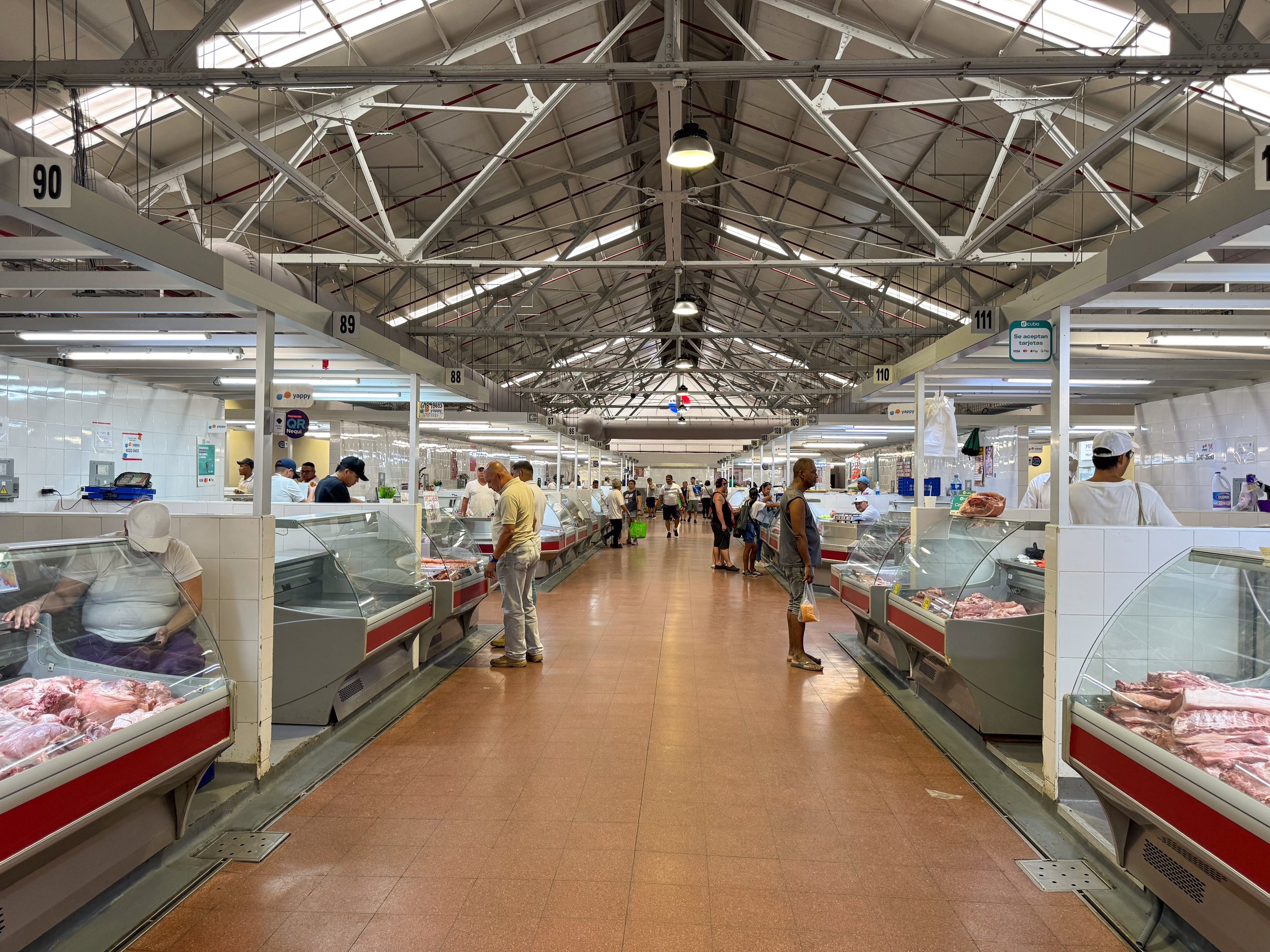
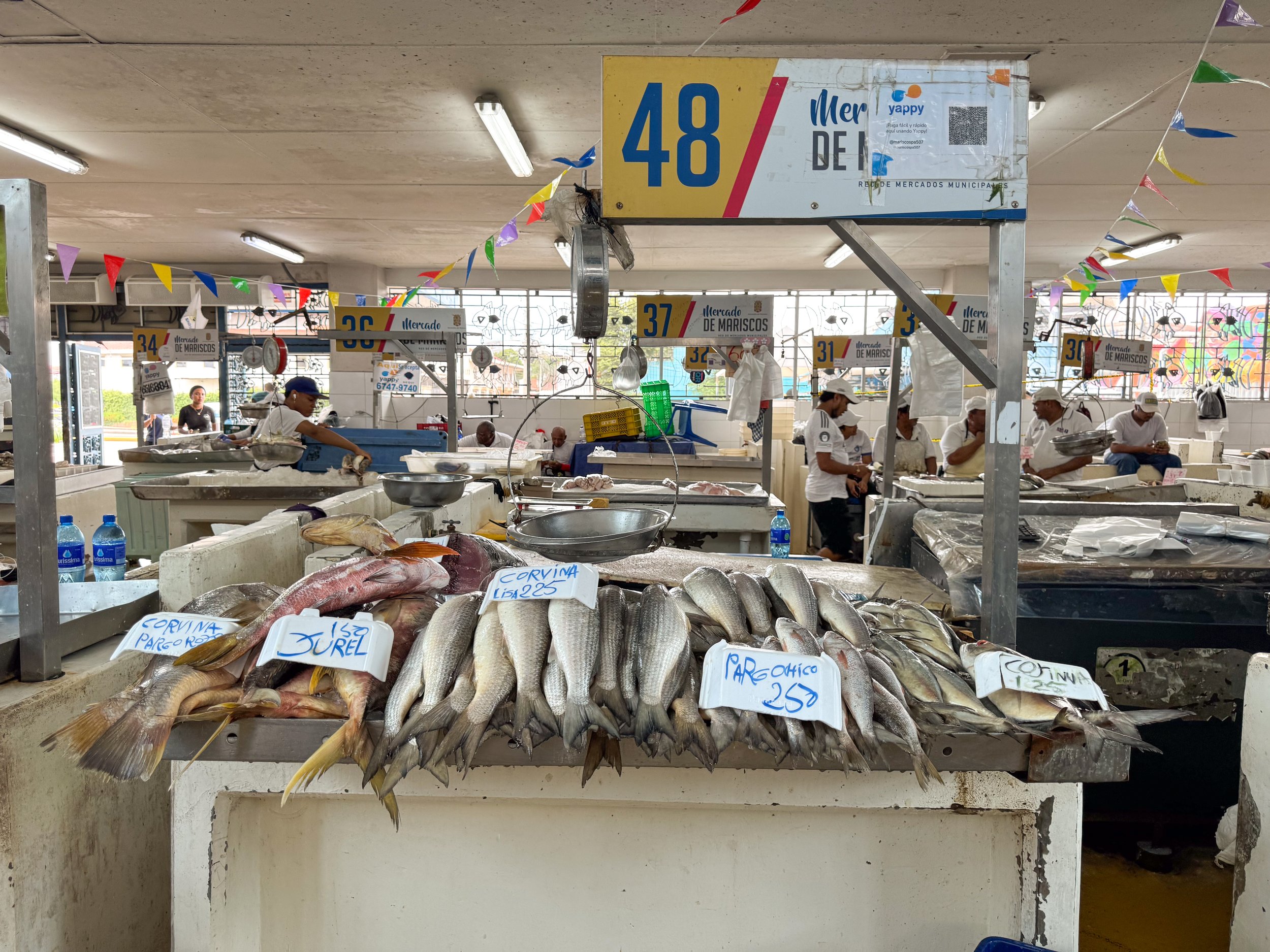
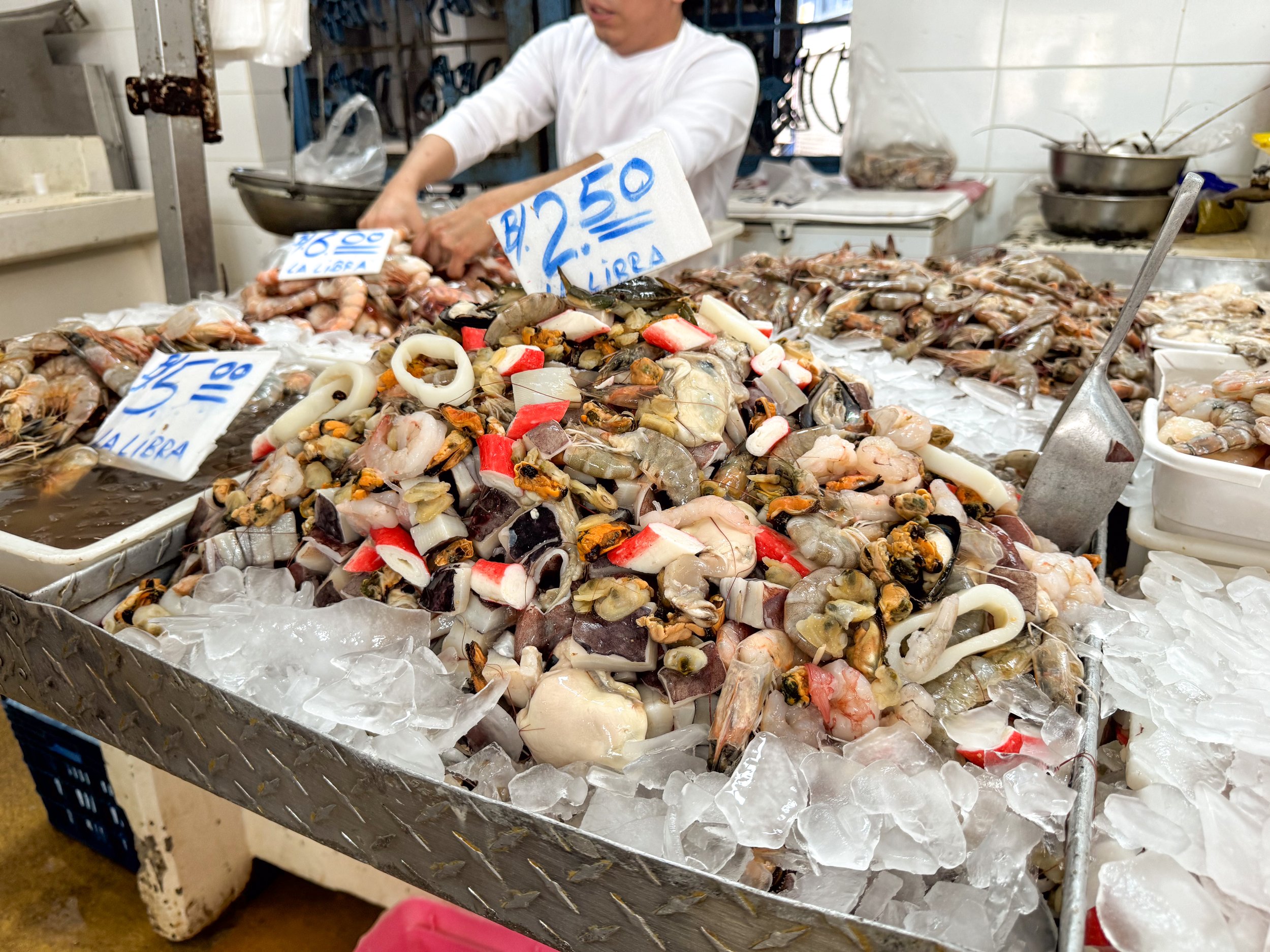
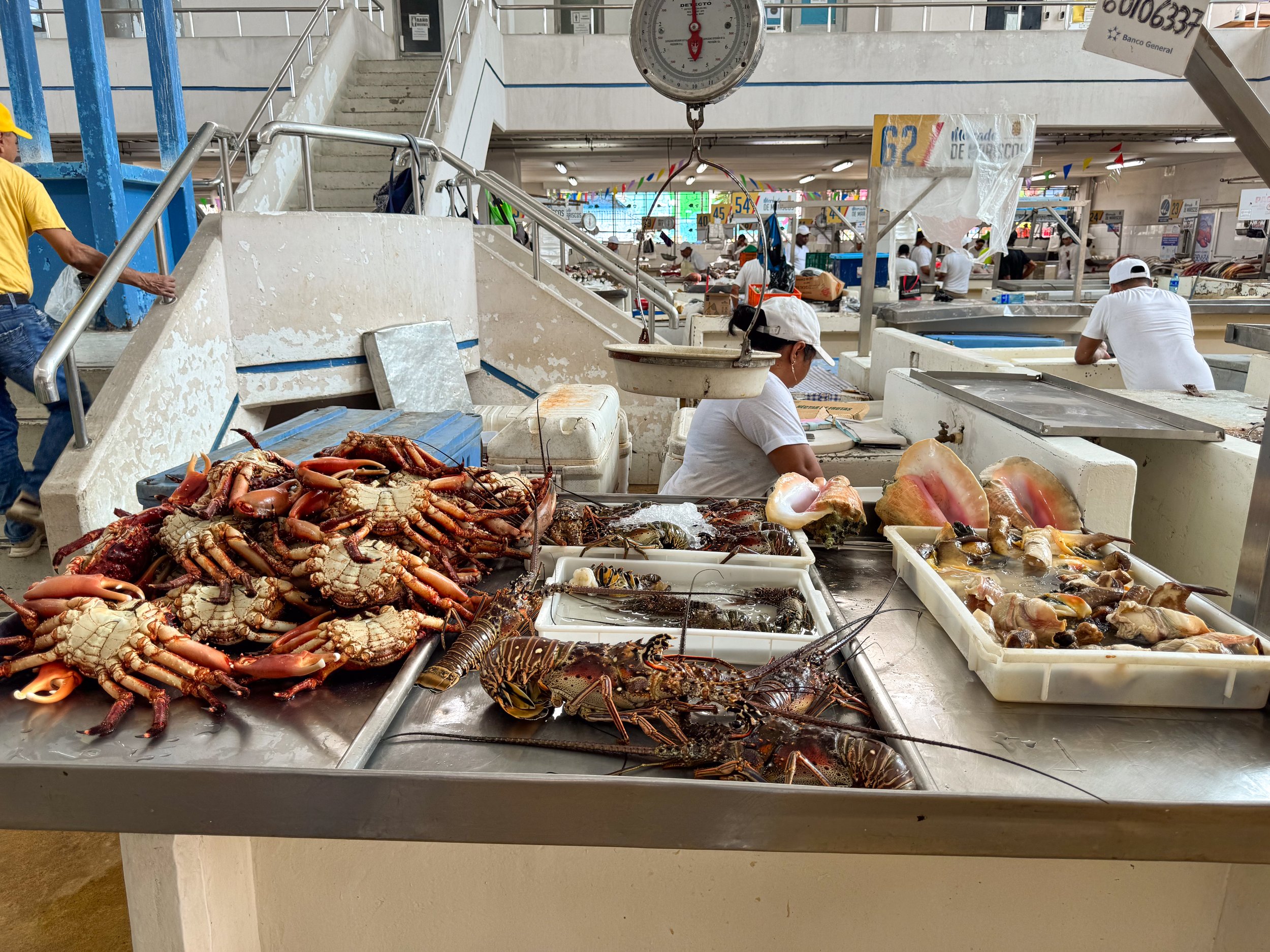
Markets
Mercado San Felipe Neri. A food market with butchers selling locally farmed meats and vendors selling locally grown produce, fruits, eggs, grains, herbs, oils and juices. We shopped for a week’s worth of groceries to cook with at our Airbnb.
Mercado de Mariscos. A seafood market with vendor selling piles of whole fish on ice, trays of shrimp, live crab and lobster, queen conch and mixed seafood. We bought a 2 lb Corvina, Panama’s favorite fish, and fried it in traditional methods. Opposite of the market is a second building with restaurants and vendors cooking up the day’s fresh catch. Here we ordered Caribbean shrimp, coconut rice and locals beers from Restaurante Allison.
Avienda Central. A pedestrian street stretching from Cinco de Mayo station to Casco Viejo with commercial shops, grocery stores, restaurants, cafes and street vendors selling produce, especially plantains stacked on tables and pineapples in the backs of trucks.
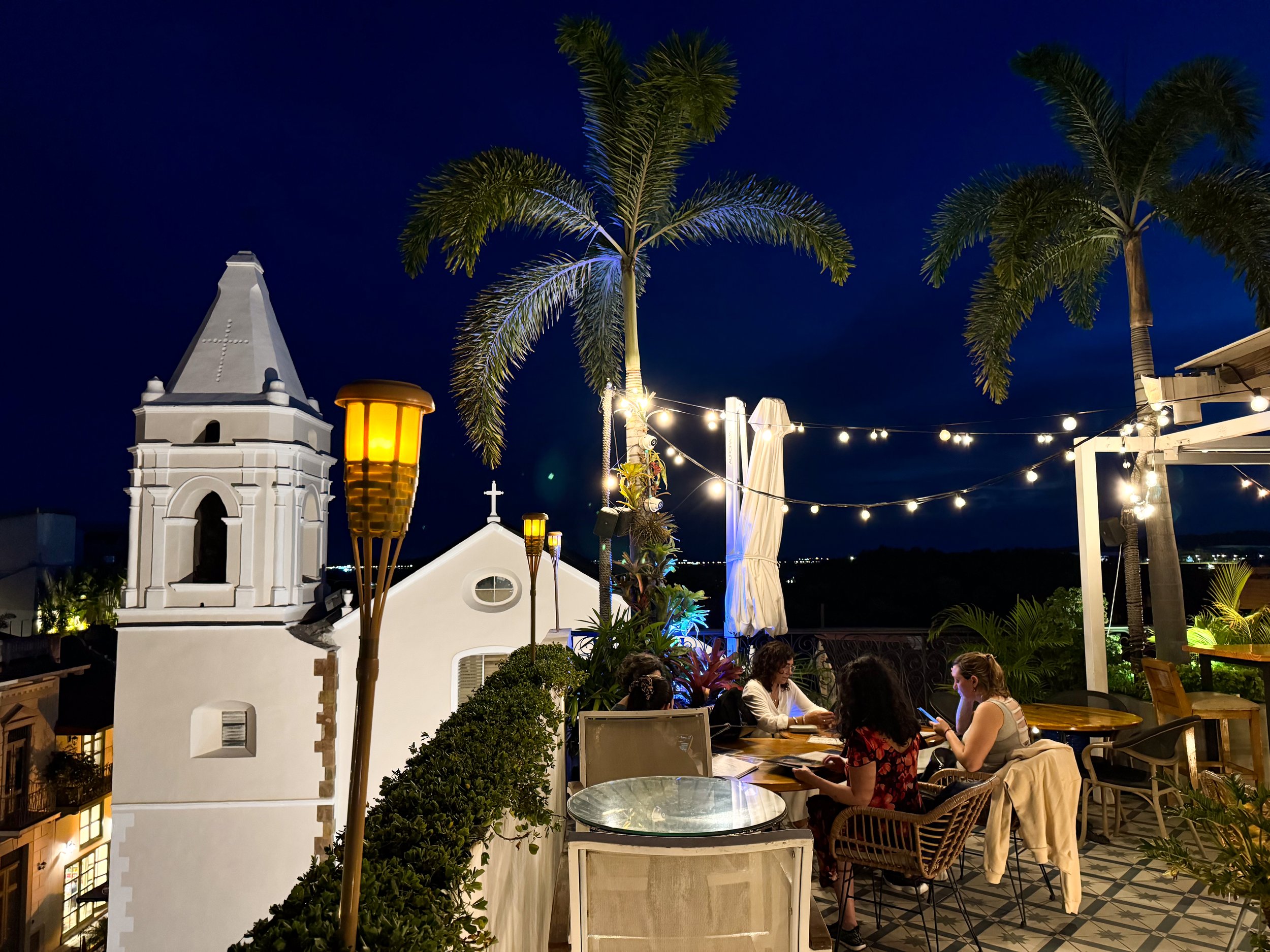
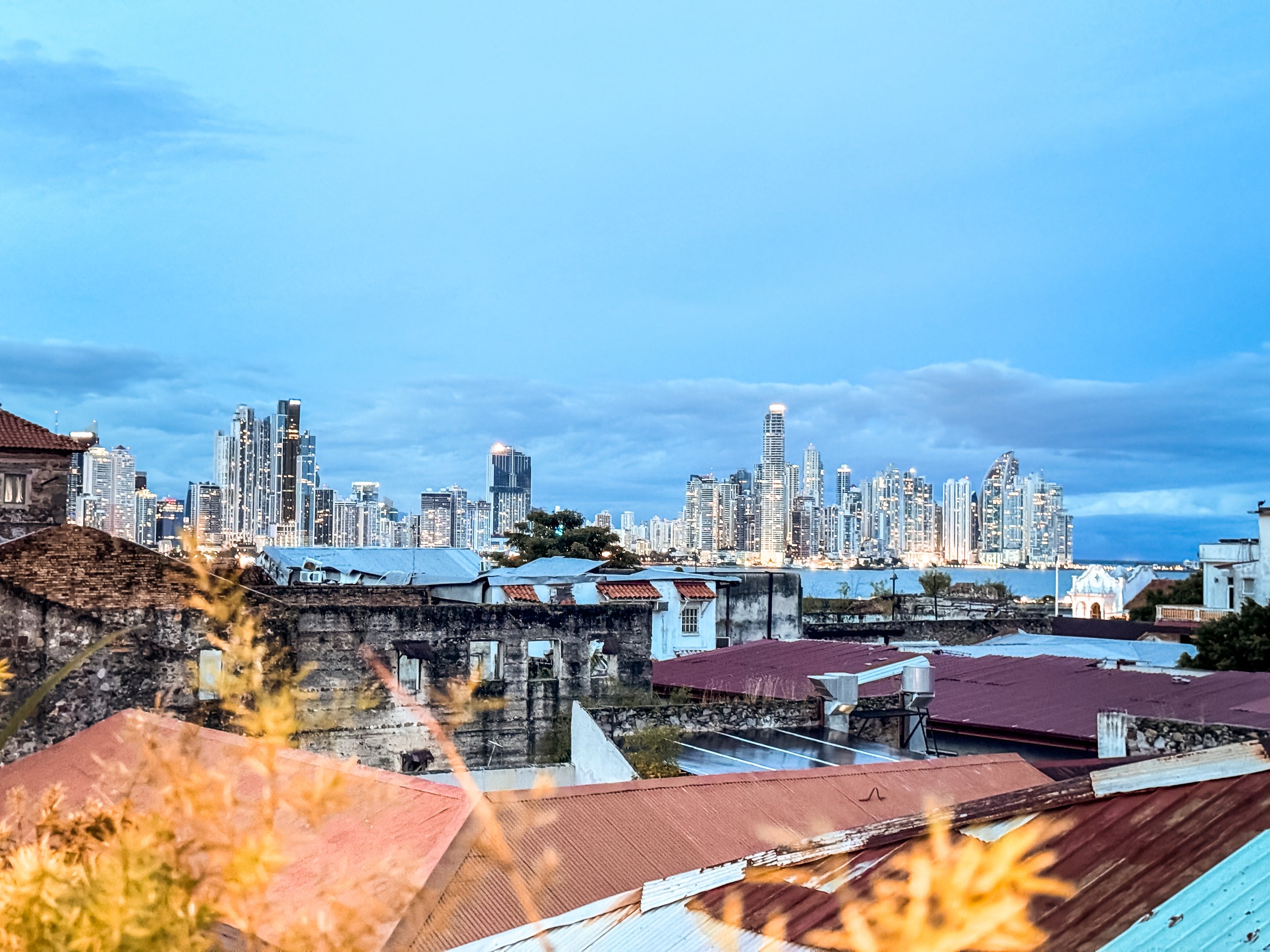
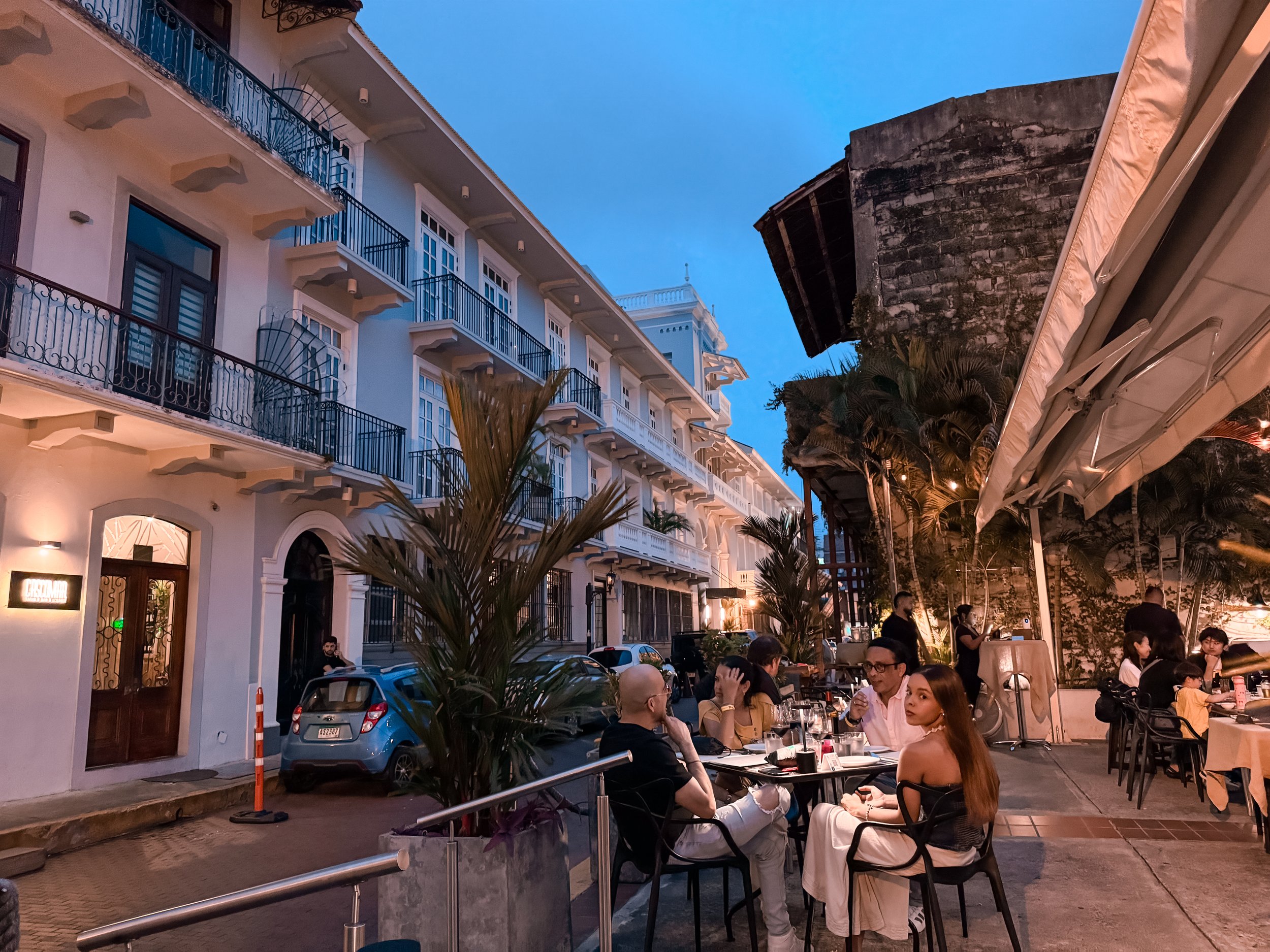
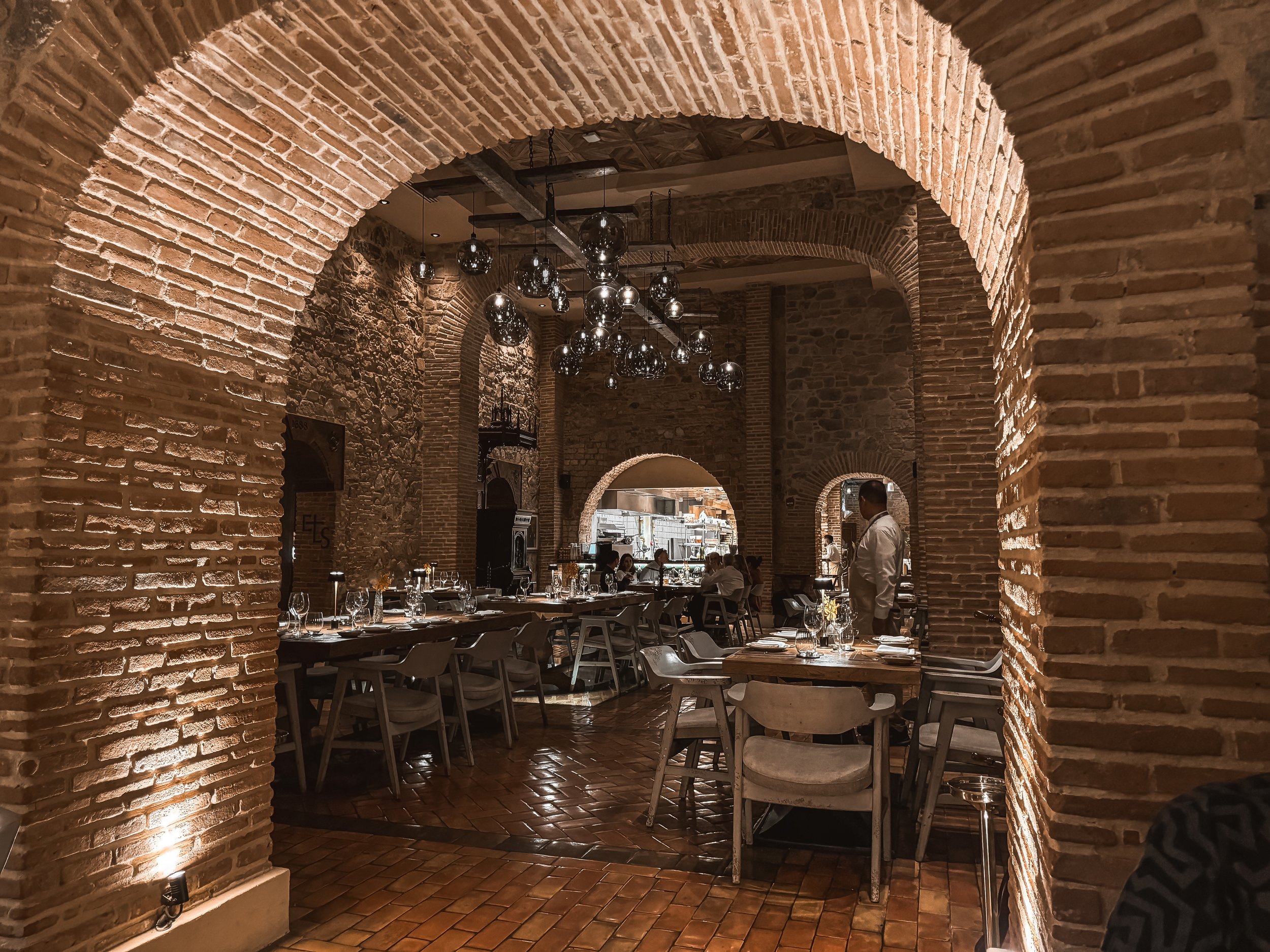
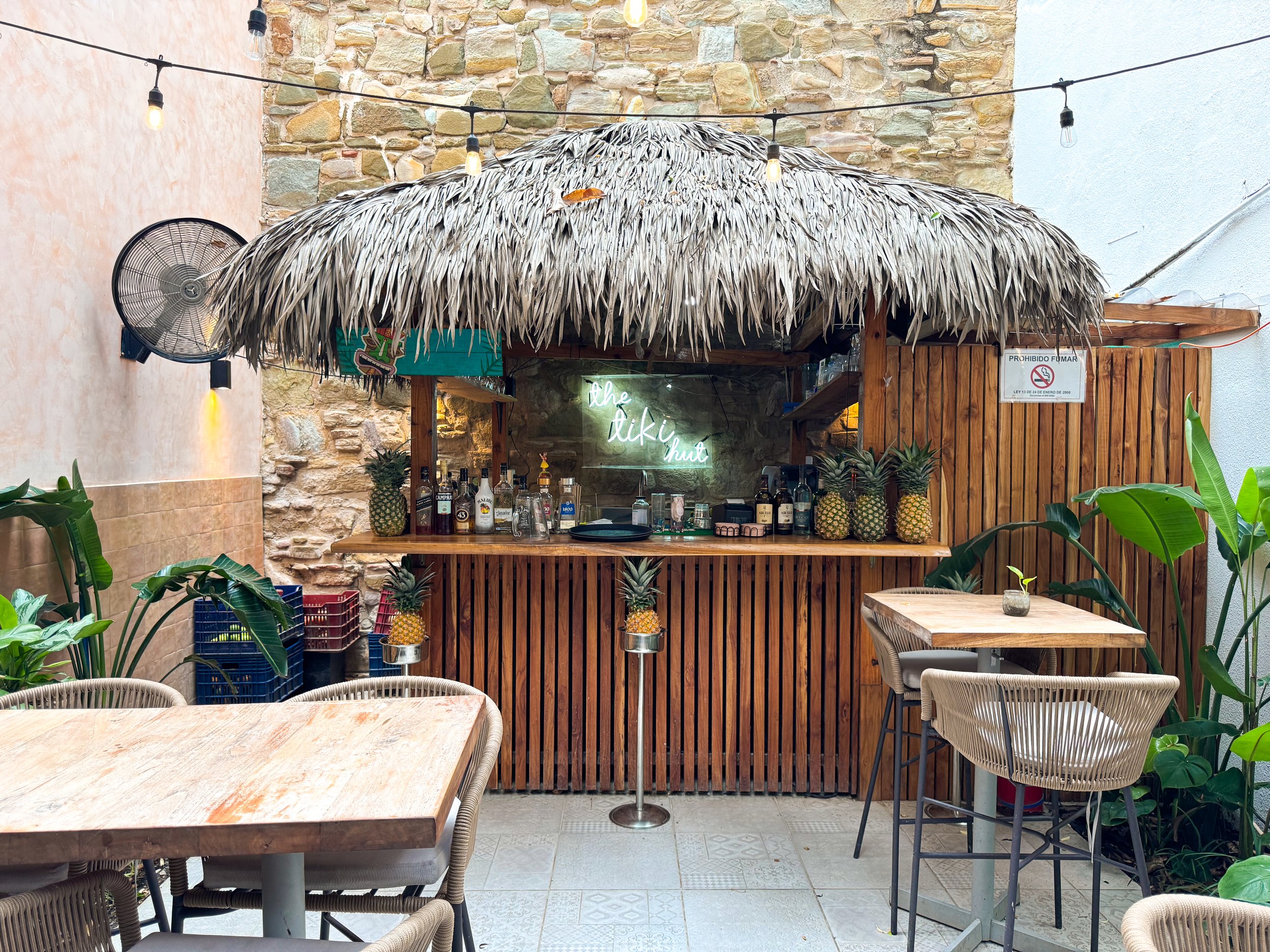
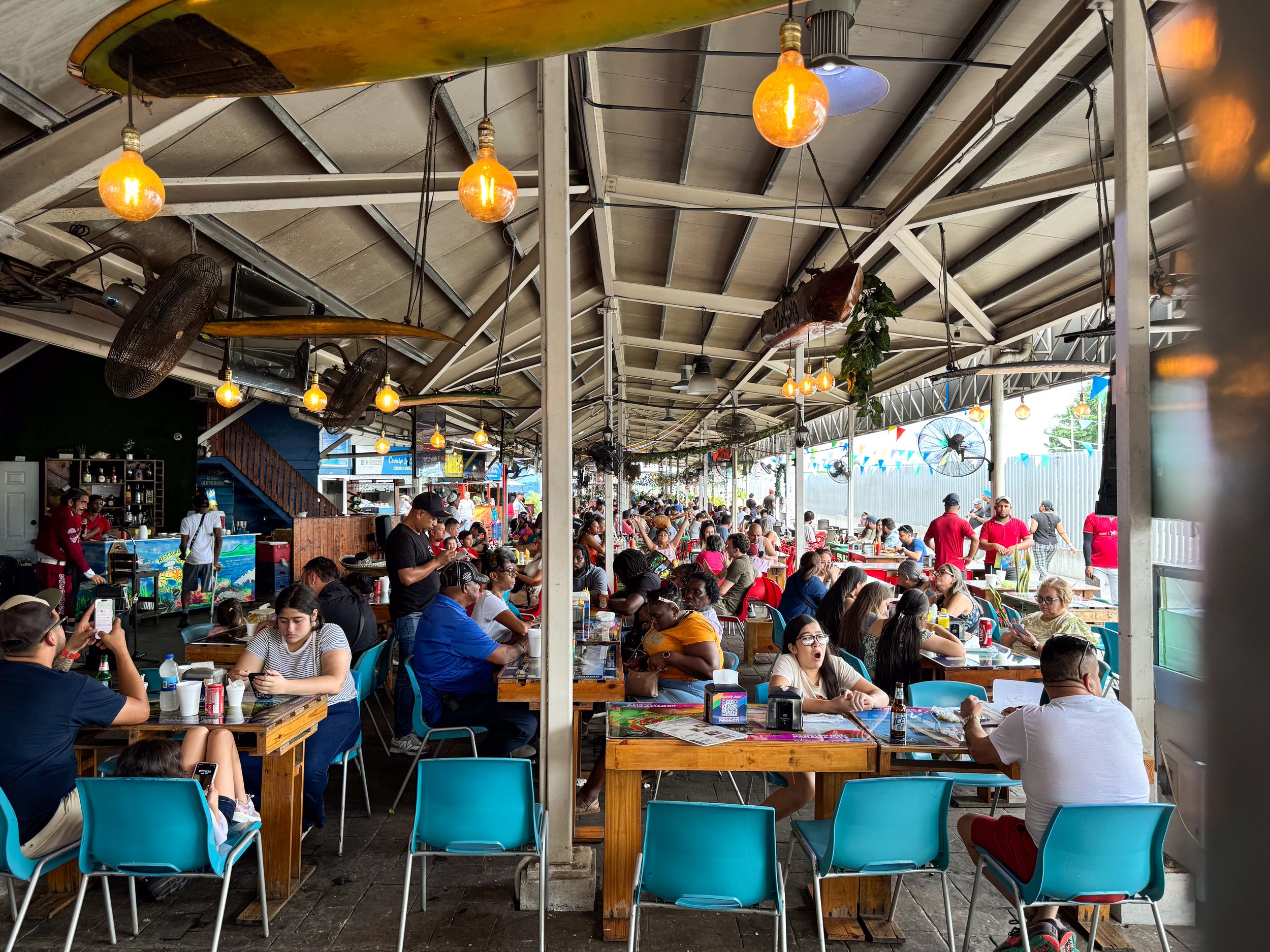
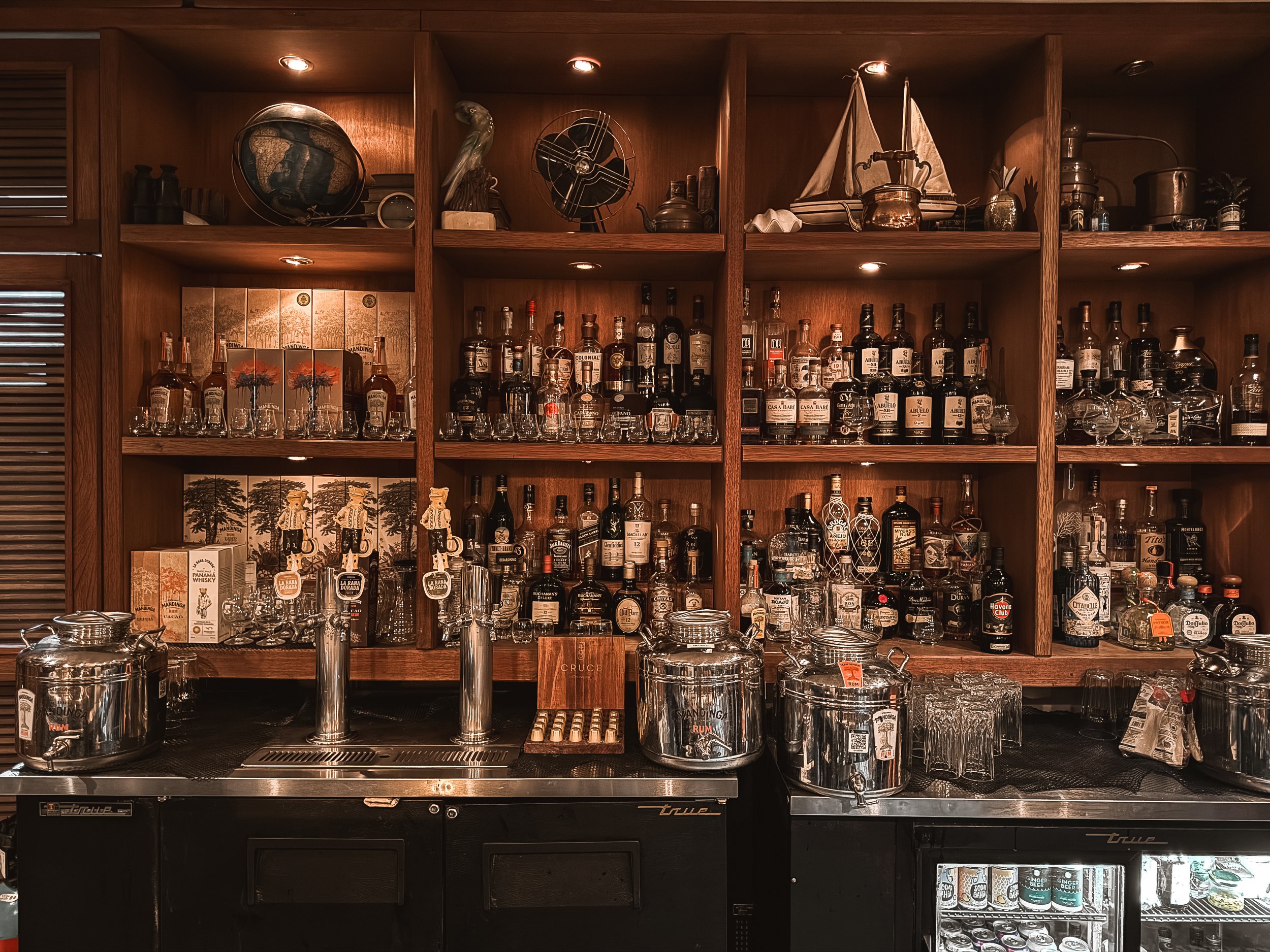
Where to Eat & Drink
Casco Mar. A restaurant along the seaside of Casco Viejo with a Spanish style tapas and paella menu. We sat outside listening to the waves and sounds of the city. To eat, we shared the plantains, passion fruit ceviche, white fish stuffed peppers, coconut flan and the most refreshing mojitos.
El Santuario. A very romantic and higher end restaurant built within the ruins of a former monetary. The interior is defined by its exposed stone walls, brick arches, high ceilings, terracotta tiled and patterned wood floors. The menu specializes in Panamanian and Spanish dishes. We shared a seafood paella with scallops, langoustine, mussels and calamari. To drink, we each ordered a glass of red sangria.
Snack Shack. A beautiful restaurant in Casco Viejo. W ordered a breakfast bowl of tropical fruits (mango, pineapple, banana and papaya) with a coconut cream sauce as well as a traditional breakfast with fried eggs, toast, potatoes and avocado. There is a Tiki Bar in the garden area at the back of the restaurant.
Café Unido Casco Viejo. An old town coffee shop and cafe with Panama grown and roasted beans.
Vista Corona Panama. A tropical rooftop restaurant and bar with palm trees, tiki torches, house music, a bar built from a VW bettle and views of the old towns rooftops and spires. We came here to relax with a cocktail after a long day of hiking and busing. Try the rum cocktails like an Old Cuban and Tobaga.
Tantalo Rooftop Bar. A rooftop bar in Casco Viejo with cocktails and local beers. We came here for sunset drinks overlooking the city’s terracotta roofs, cathedral towers and modern skyscrapers across the bay. Fittingly, we ordered a drink called, Noche en el Casco (Night in The Old Town).
Pedro Mandinga Rum Bar. A warmly lit rum bar with a wooden interior and old world charm. The bar features rums from countries across the Caribbean and Central America including Panama and their own distillations. Try a glass neat, order a flight of rums, a classic cocktail or
VIP. A boutique and juice bar connected to Monos con Arte. Order a fresh Pepa Fria (cold coconut) to enjoy while walking around the old town.
Where to Shop
Casco Viejo is a very fashionable place with well dressed locals and tourists, boutiques and clothing shops selling Panama hats, linen clothes, colorful outfits and items made with tropical patterns and natural materials.
Boho Shack. A resort style street wear boutique with patterned shirts, shorts and pants. We bought a palm embroidered linen shirt! We’ve also visited their location in Cartagena where the brand is based.
Bellezas de Panama. A shop selling Panama hats, hand woven Molas and various souvenirs. We found this location to have the best selection and most affordable authentic Panama hats. The typical price is $40-$45 but the shop owner sold ours to us for $30.
Mansion Herrera Clothing Shop. A boutique clothing shop with elegant linen clothes and custom Panama Hats.
Lu Maca Coffee Shop & Store. A cafe and clothing store with tropical shirts, accessories and a small selection of Panama Hats.







The San Blas Islands
The San Blas Islands are a series of many low lying islands and shills on the Caribbean side of the country. They are a tropical paradise for beach hopping, snorkeling and learning about the Guna Yana indigenous community.
The Guna Yana Indigenous People. The region is an autonomous zone in Panama home to and managed by the Guna Yana. While here, it’s common to see islands covered in palm reed and thatched houses, women wearing traditional Molas and fishermen paddling between islands in dugout canoes.
Touring the Islands. We voyaged into the sea passing palm covered islands, looking back to see views of Panama’s mountains as the spray of the sea misted across our faces.
Private Island. After a scenic boat ride, we arrived at a beautiful private island covered in palm trees and surrounded by sandy shores with vibrant blue water and patches of seagrass.
Sand Bar. Two hours later, our guides brought us to a shallow sand bar with crystal clear water, star fish and a small coral reef to snorkel above.
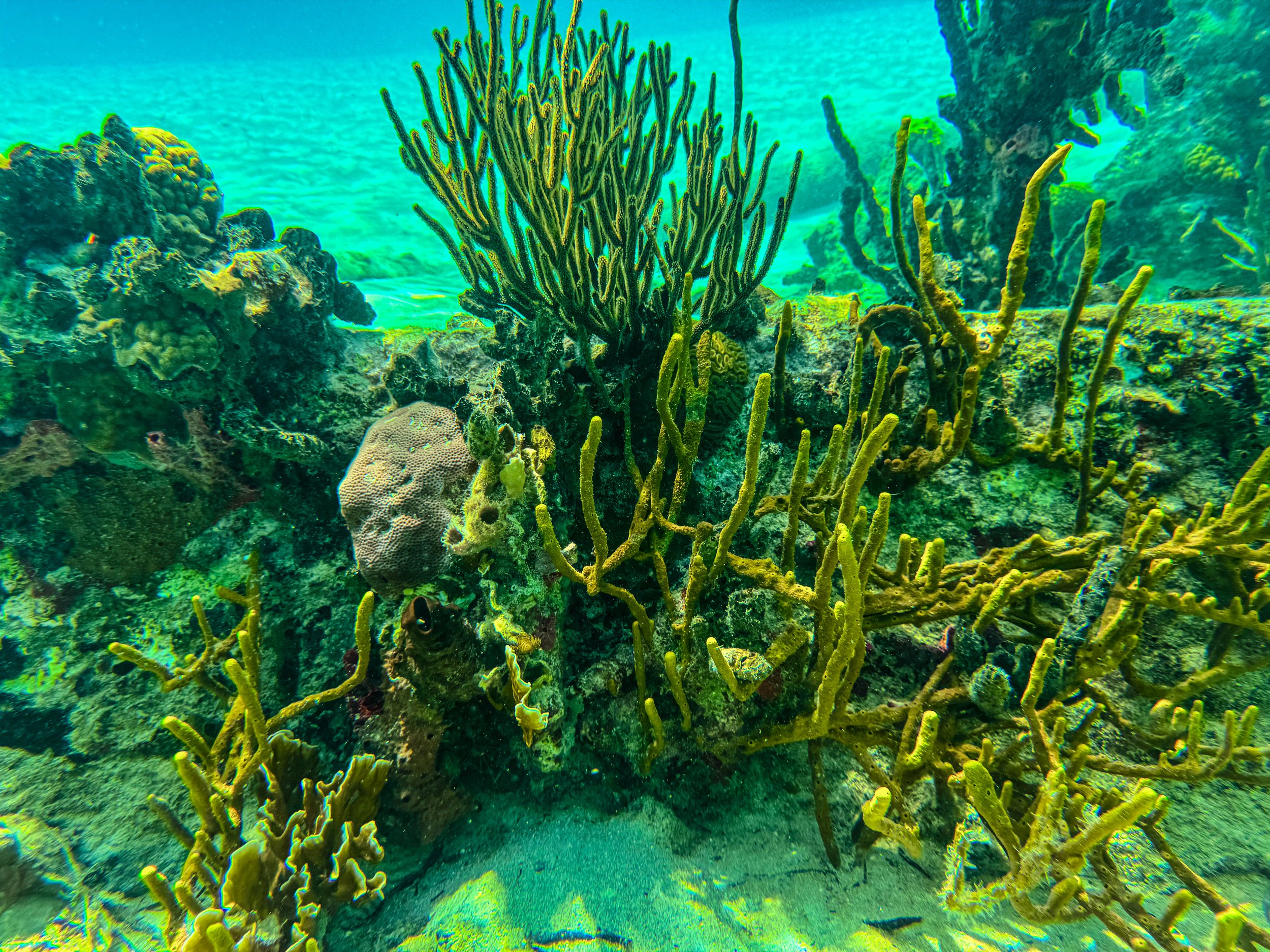
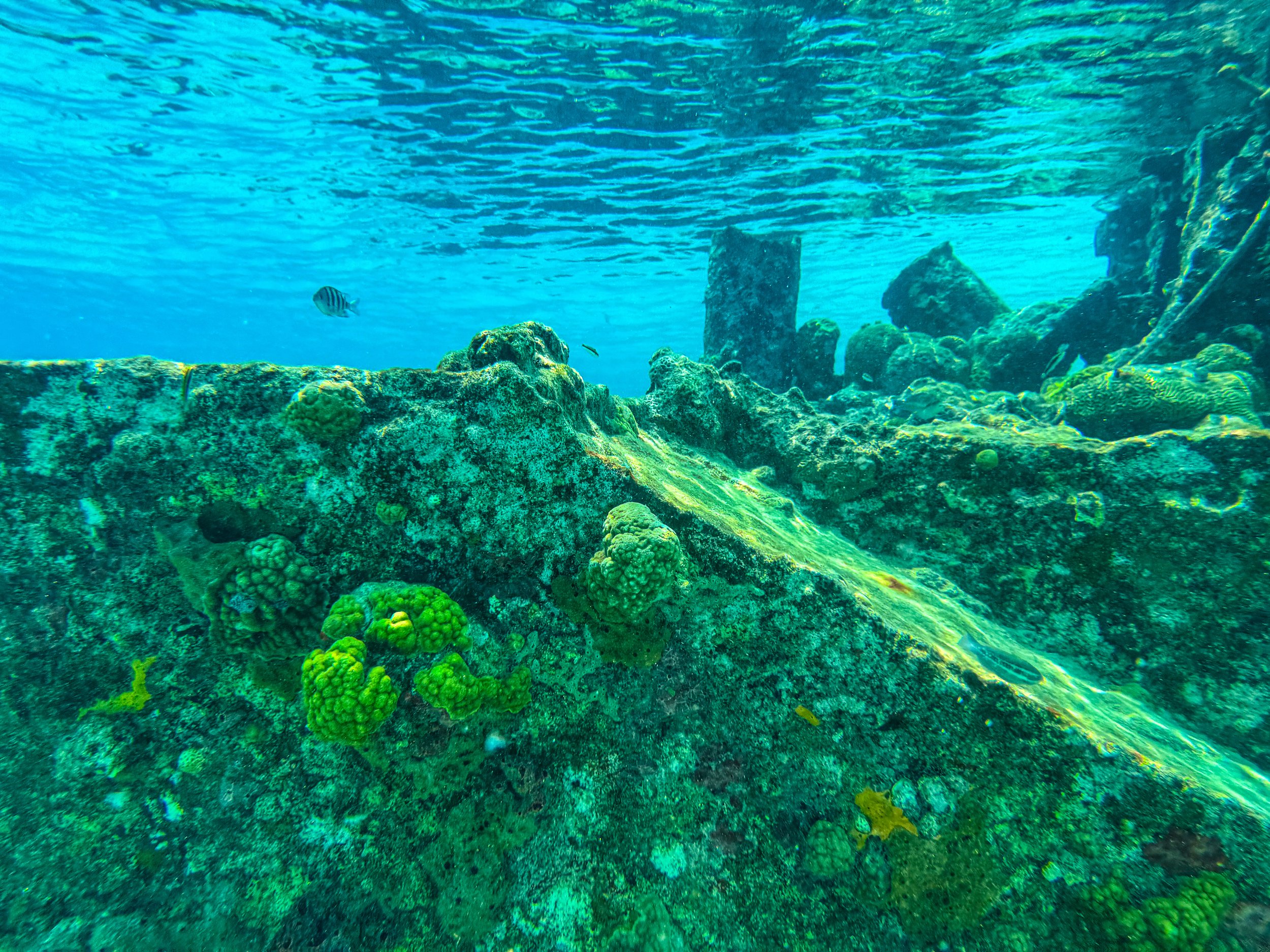
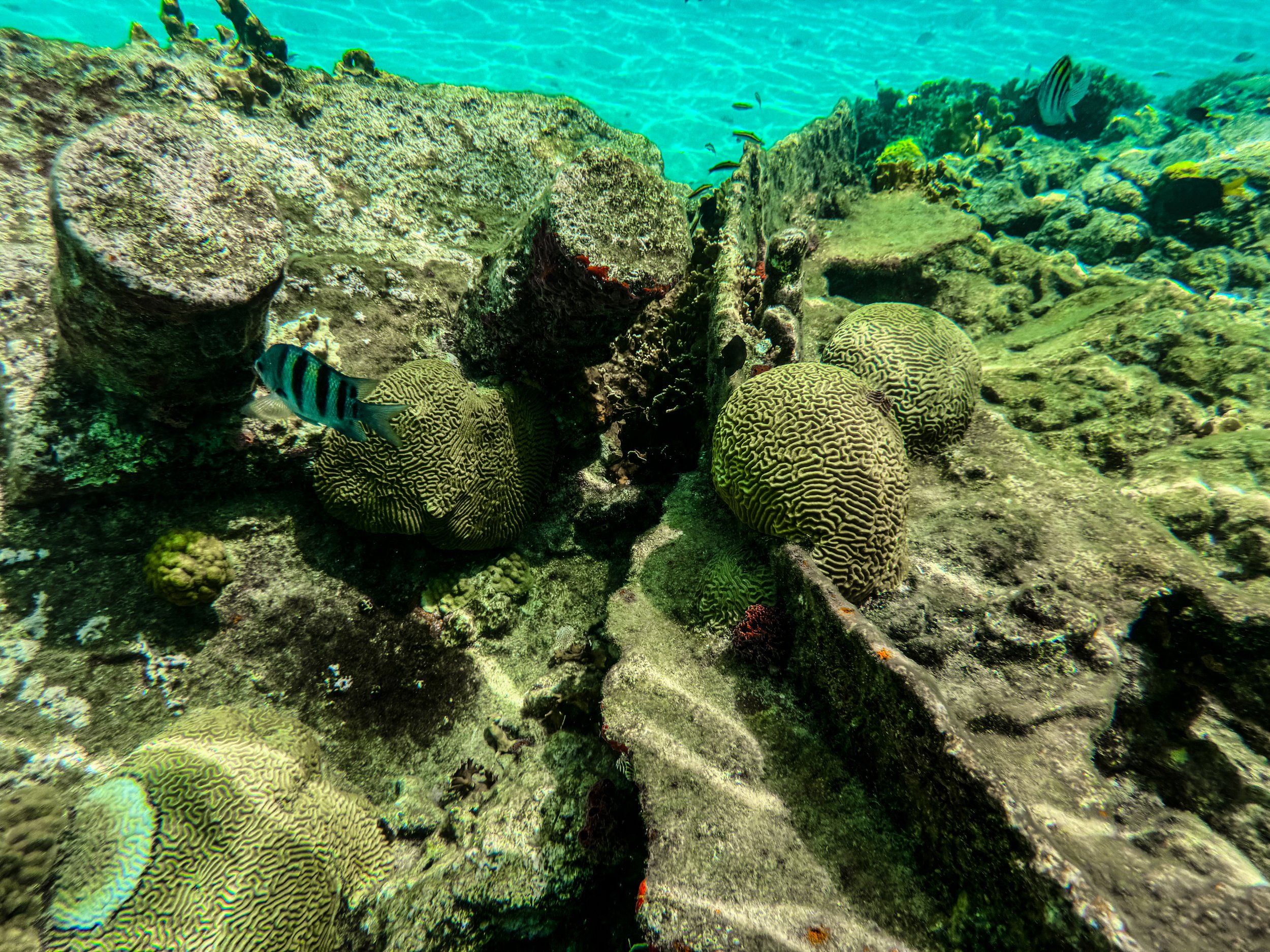
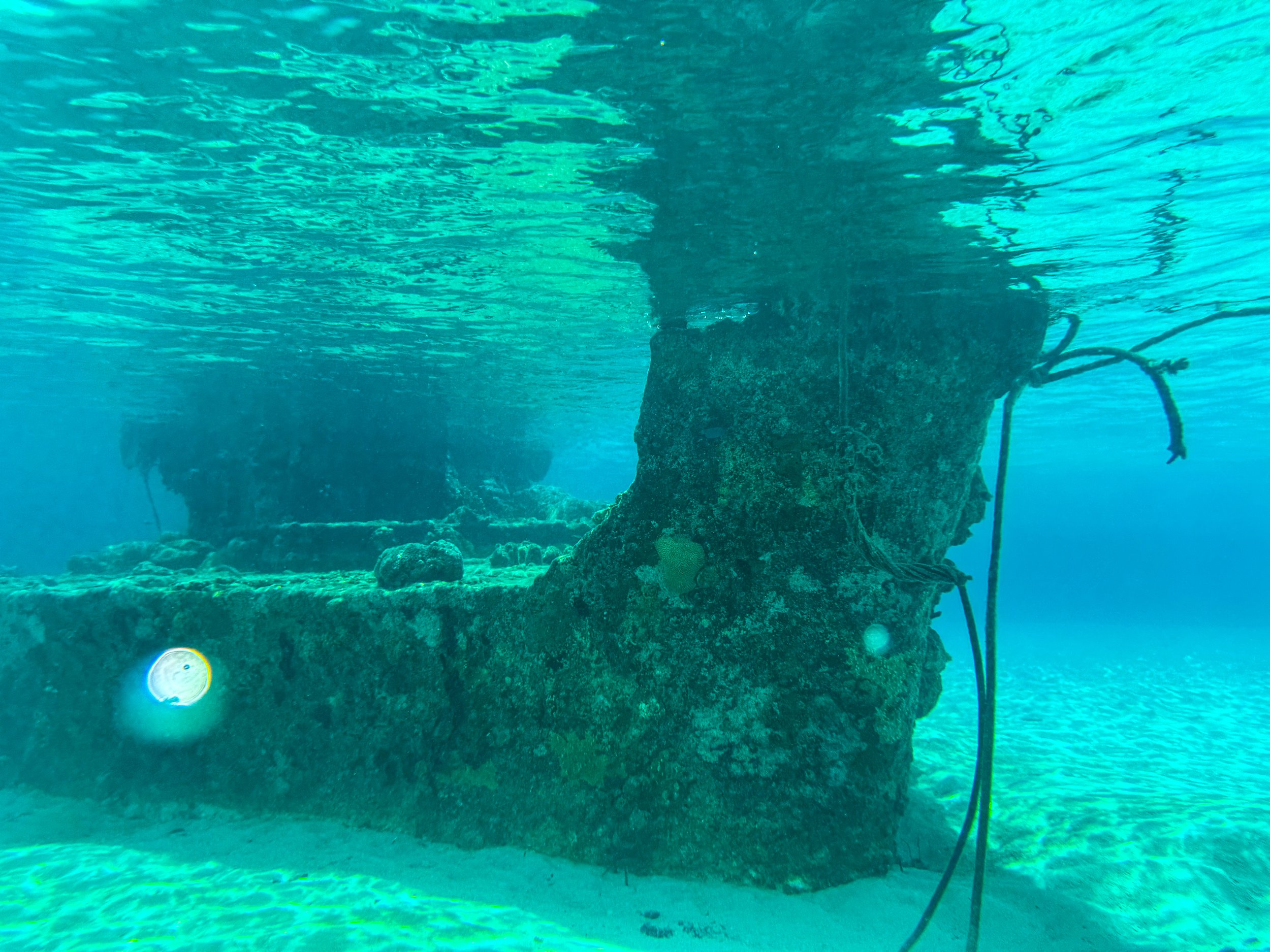
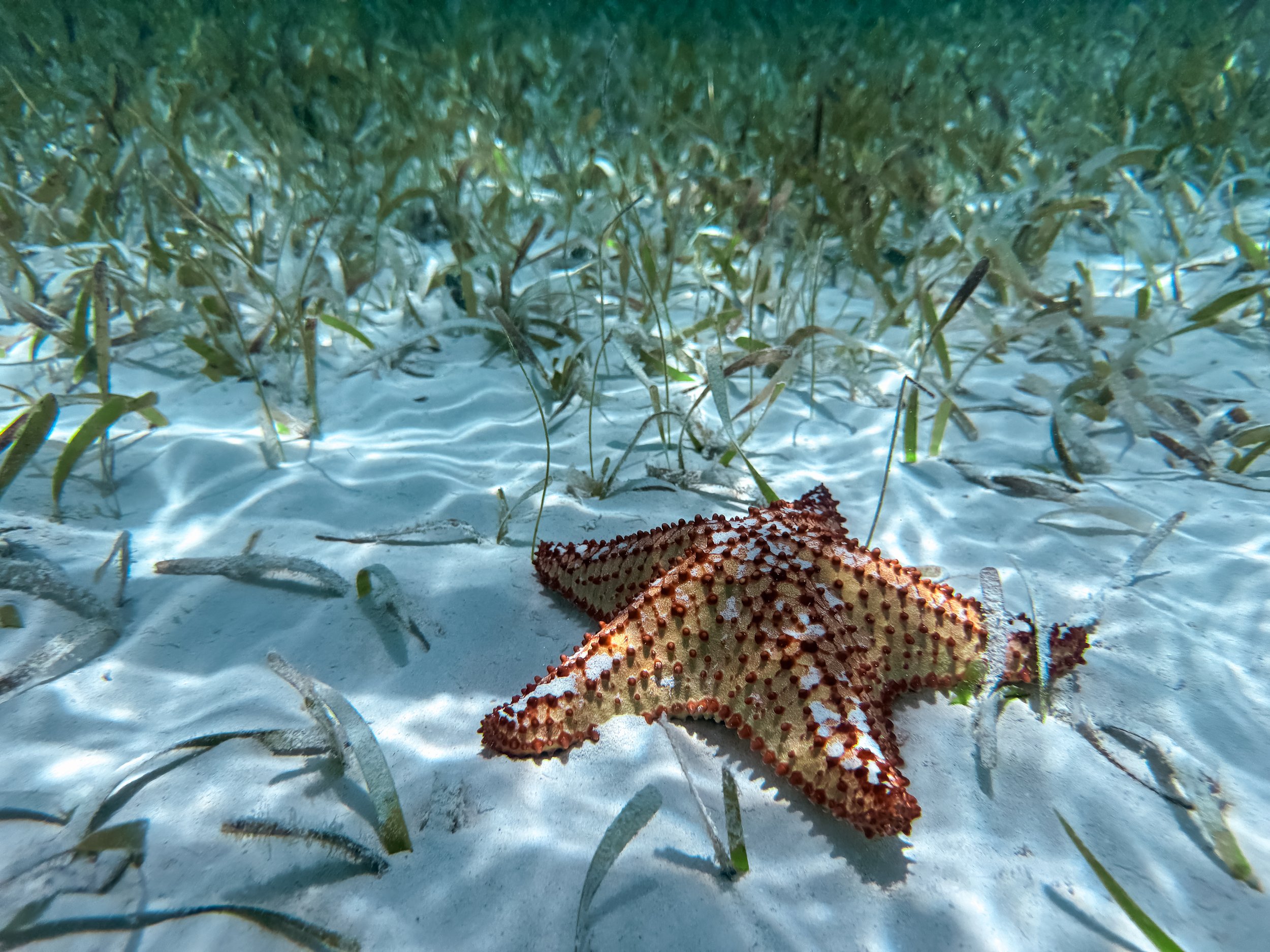
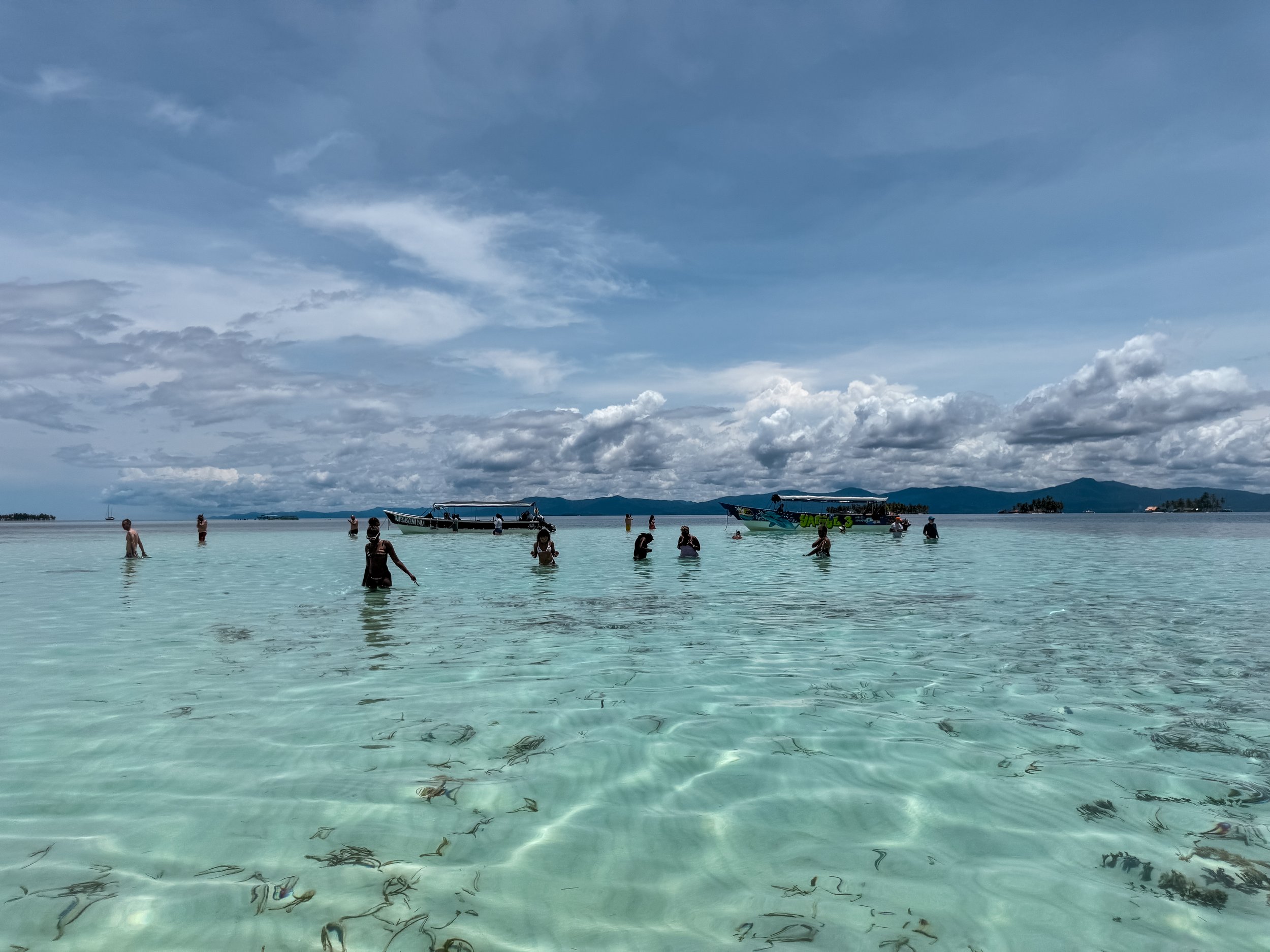
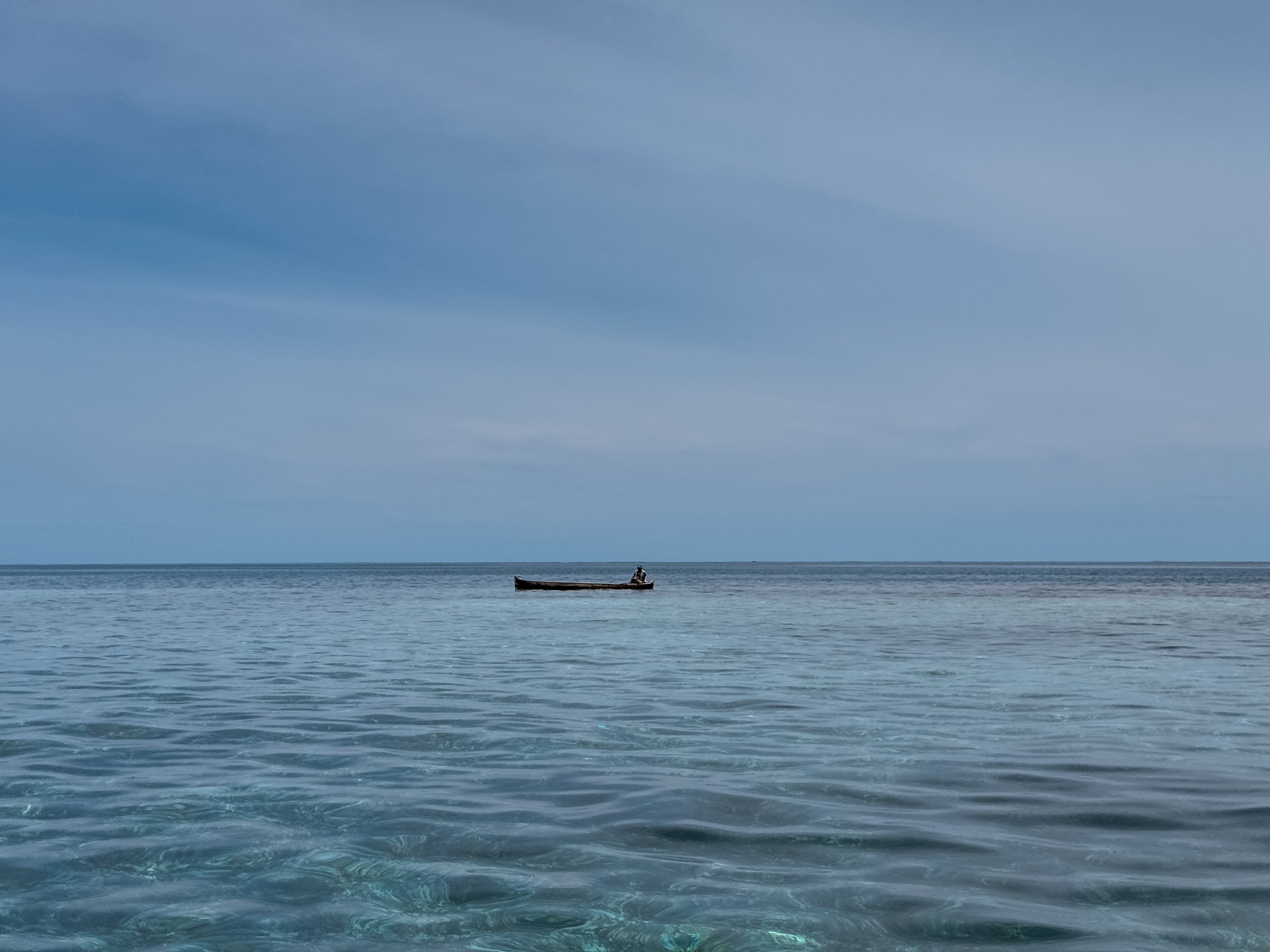
Dog Island. In the early afternoon, we arrived a an island with a sunken ship taken over by a thriving reef with all types of colorful corals and tropical fish. On shore, we were each served a whole fried corvina fish with patacones, fresh fruit and a local beer.
Isla Diablo. Towards the late afternoon, we visited one more island for beach time and tropical drinks before returning to Panama City.
Getting Here: We booked a tour with Panama San Blas Tours through Viator. Our guide picked us up at 5:15am and drove us 3 hours across the country through verdant forest and hilly terrain to reach the Caribbean coast and San Blas Islands. The last 30min of the drive are nauseating and extremely curvy with steep hills. Overall, the full day tour was incredibly memorable, very relaxing and well organized.
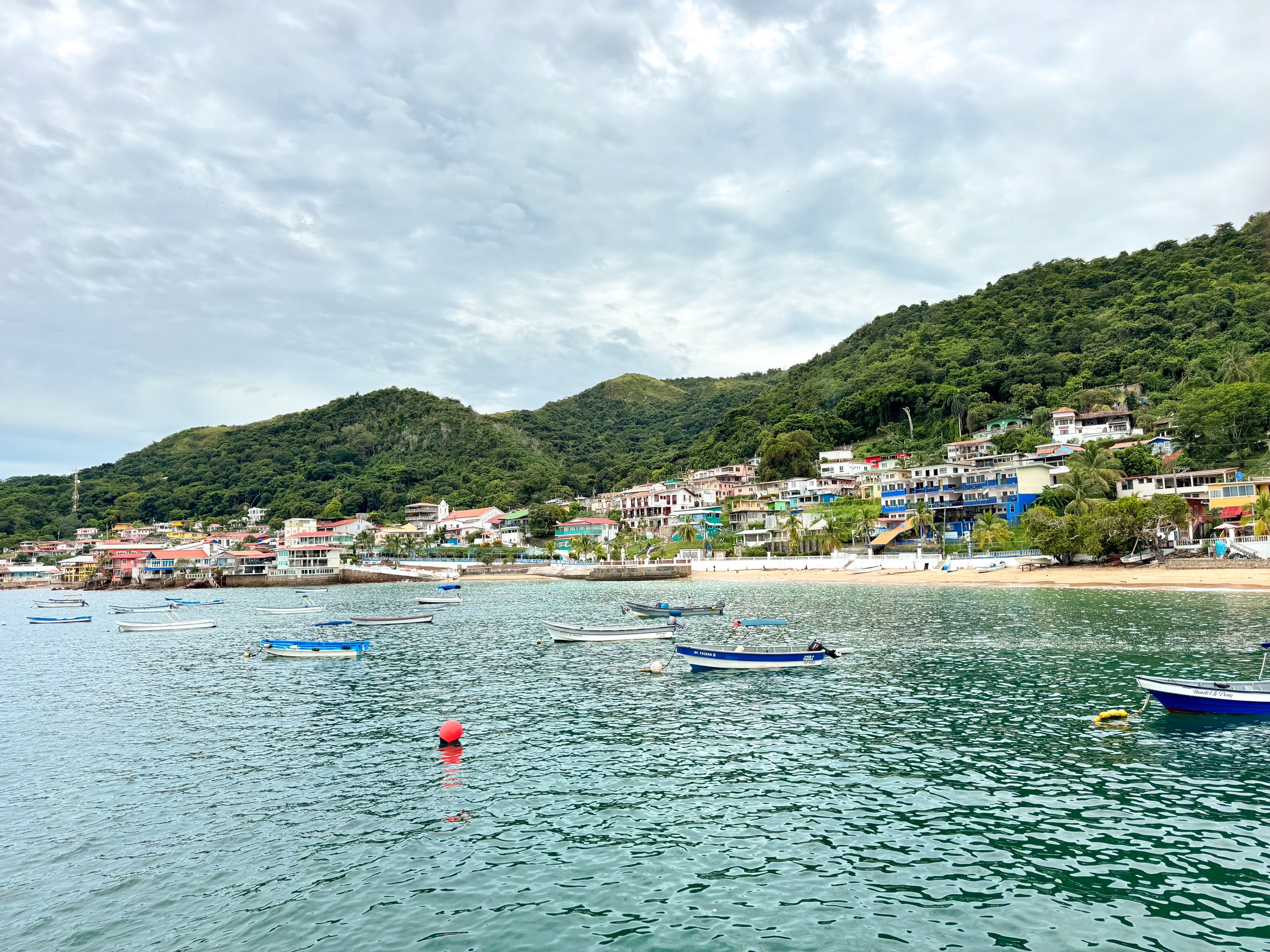
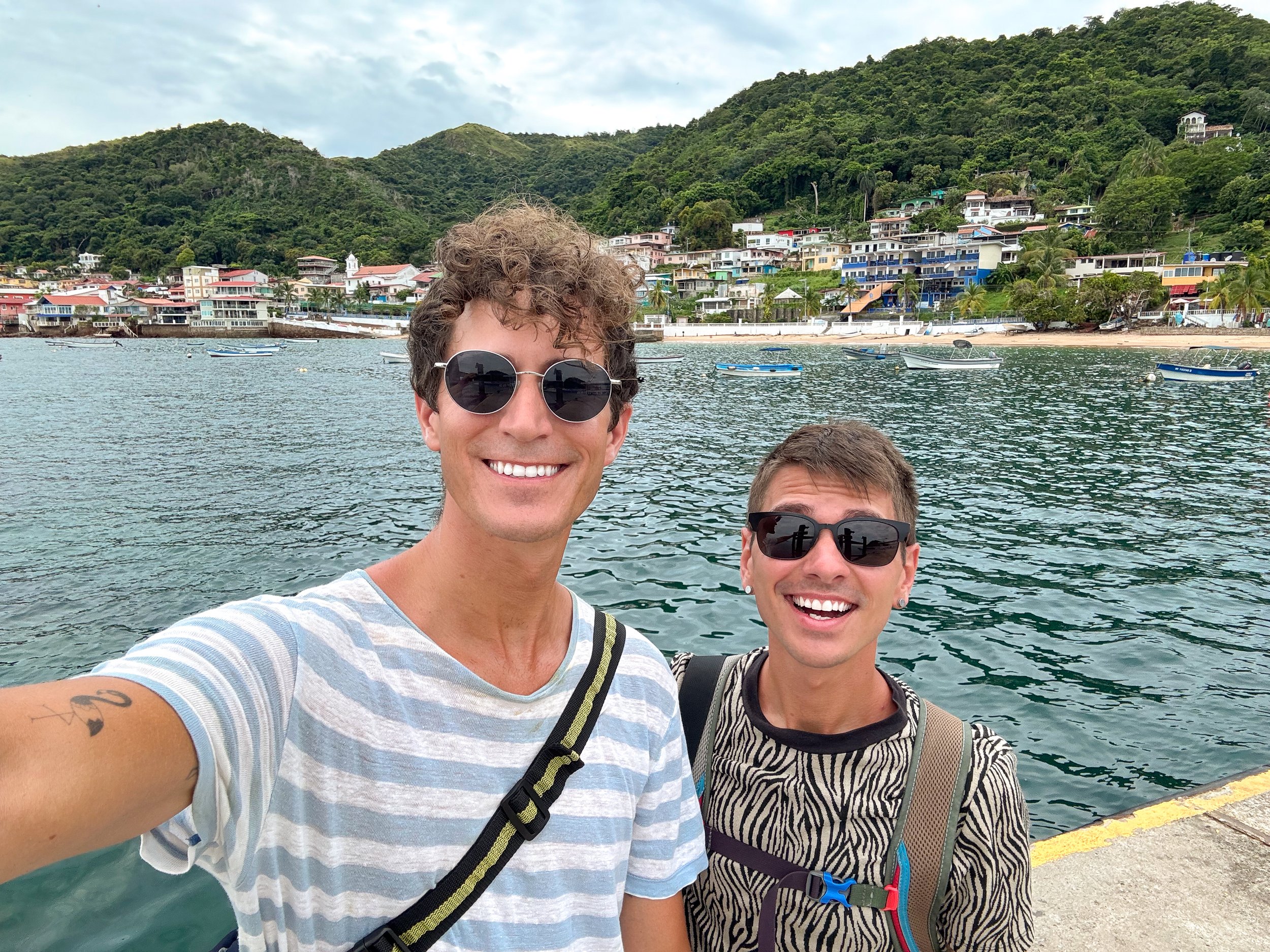
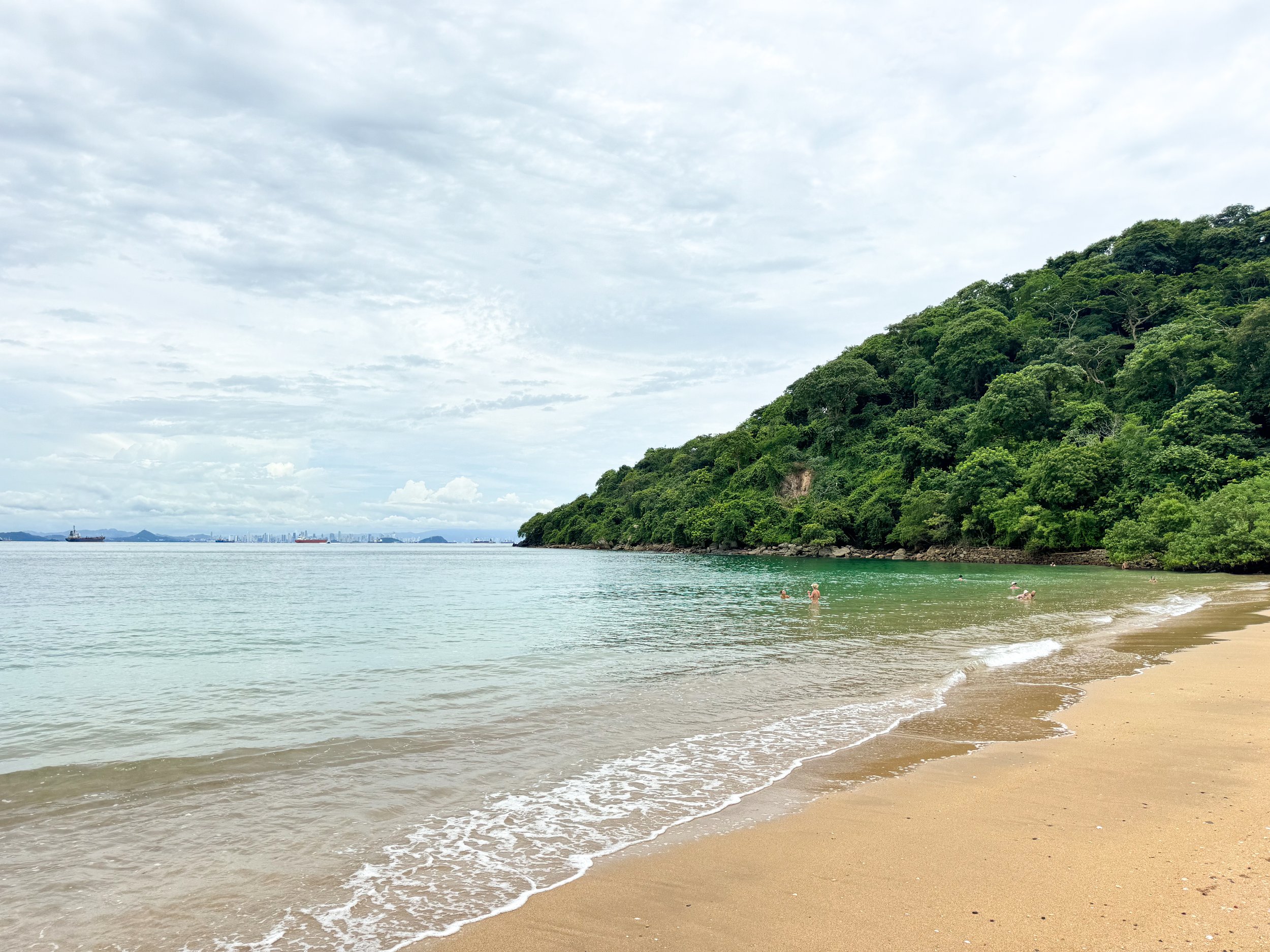
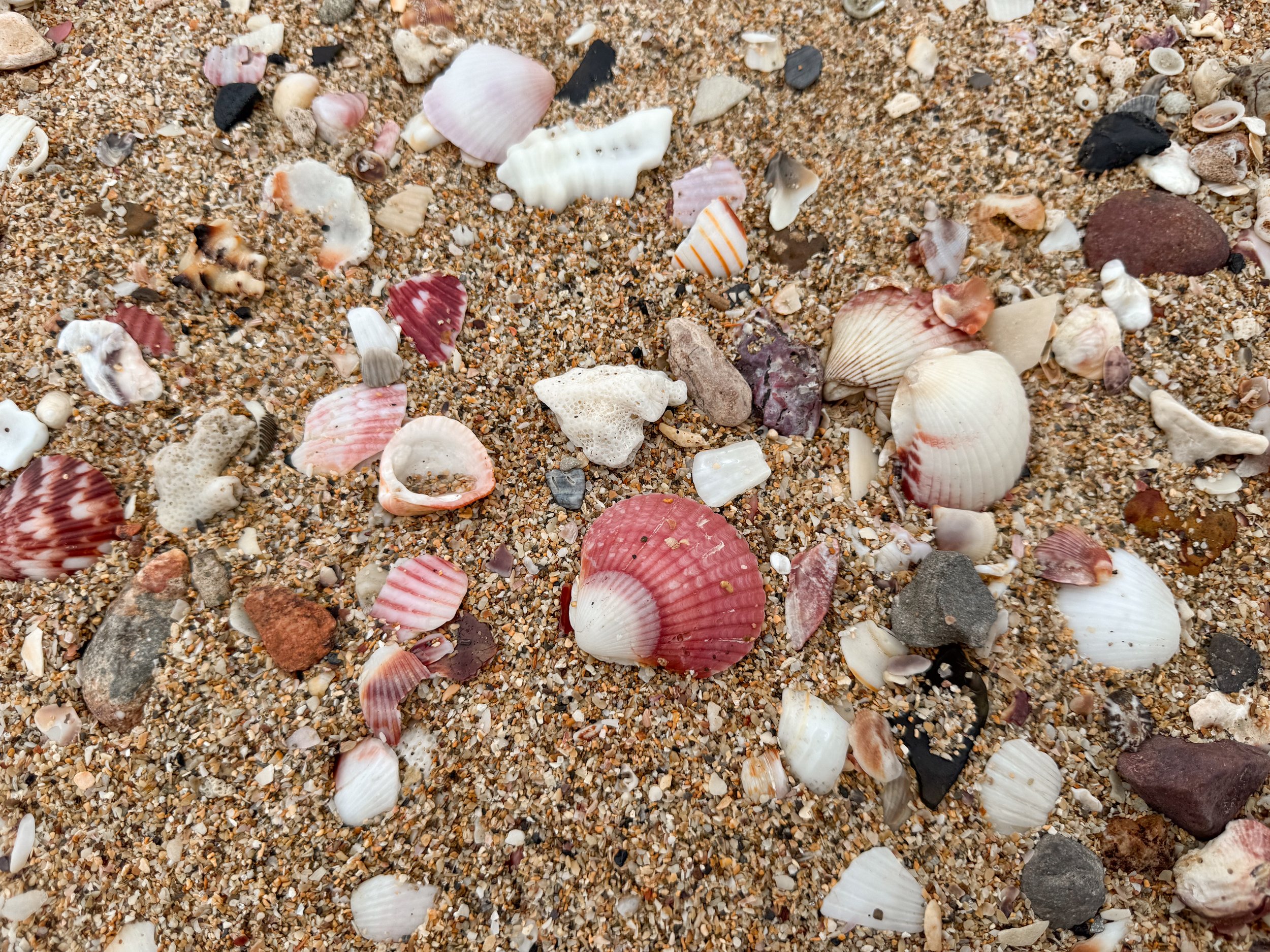
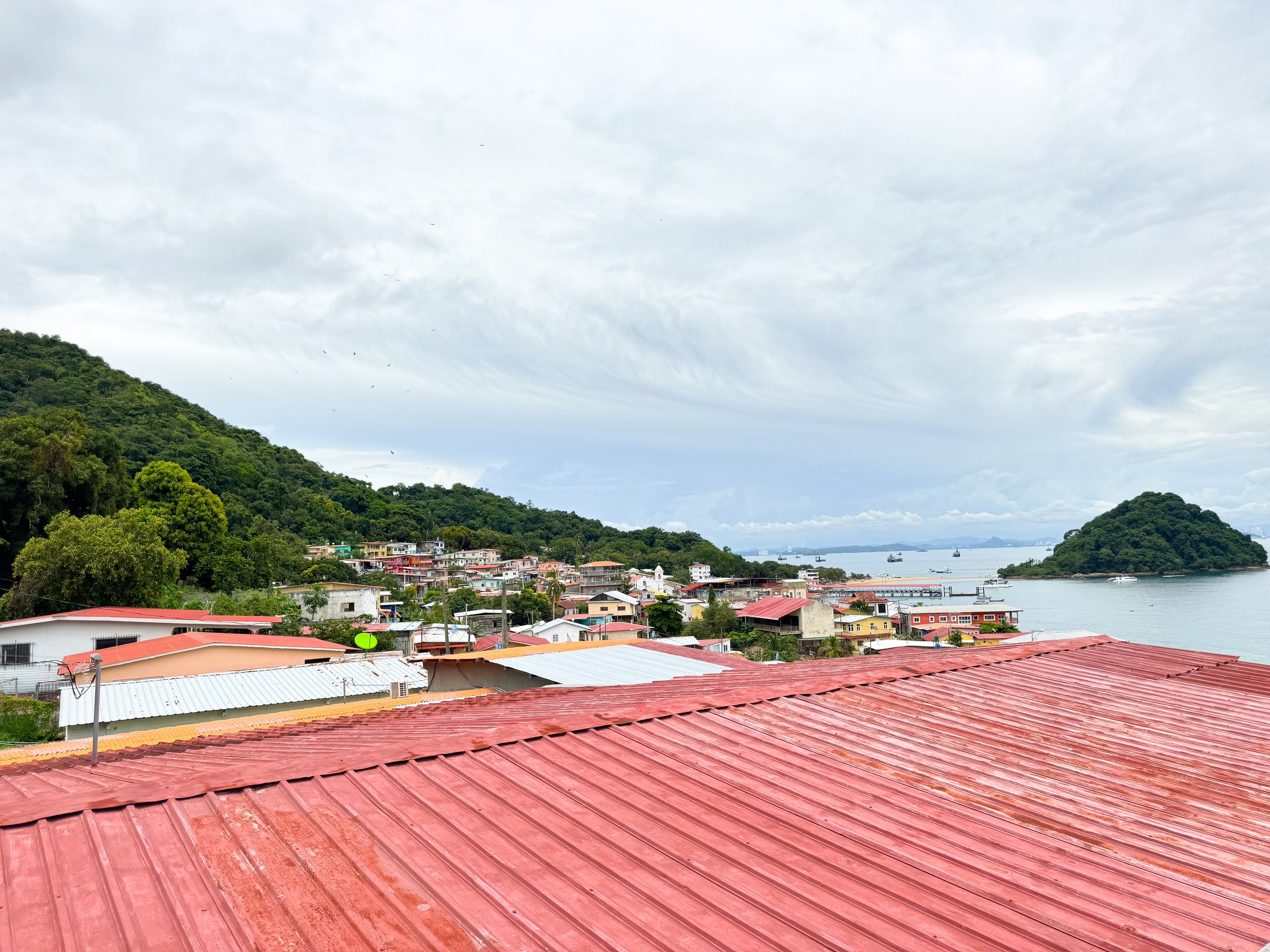
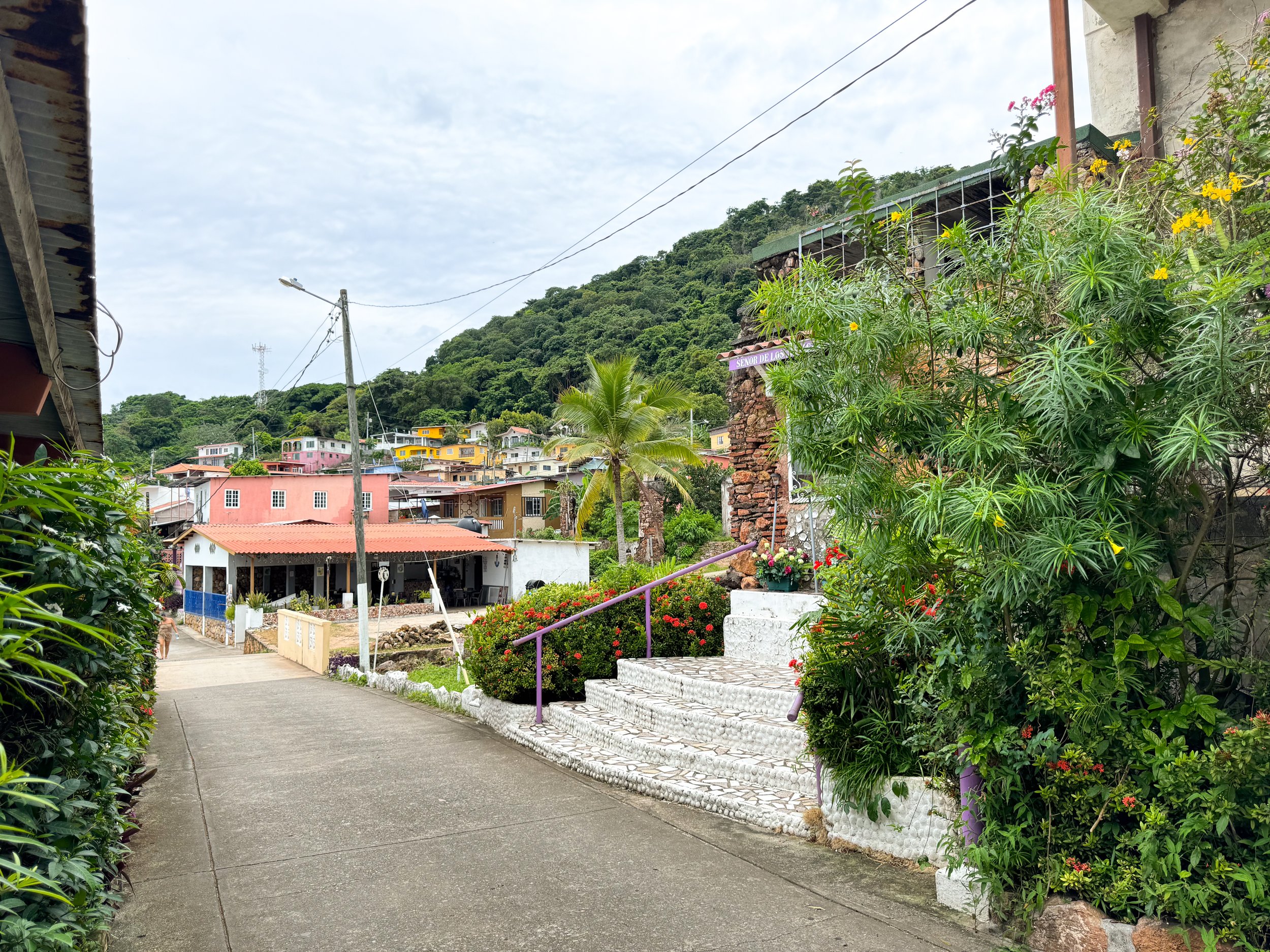
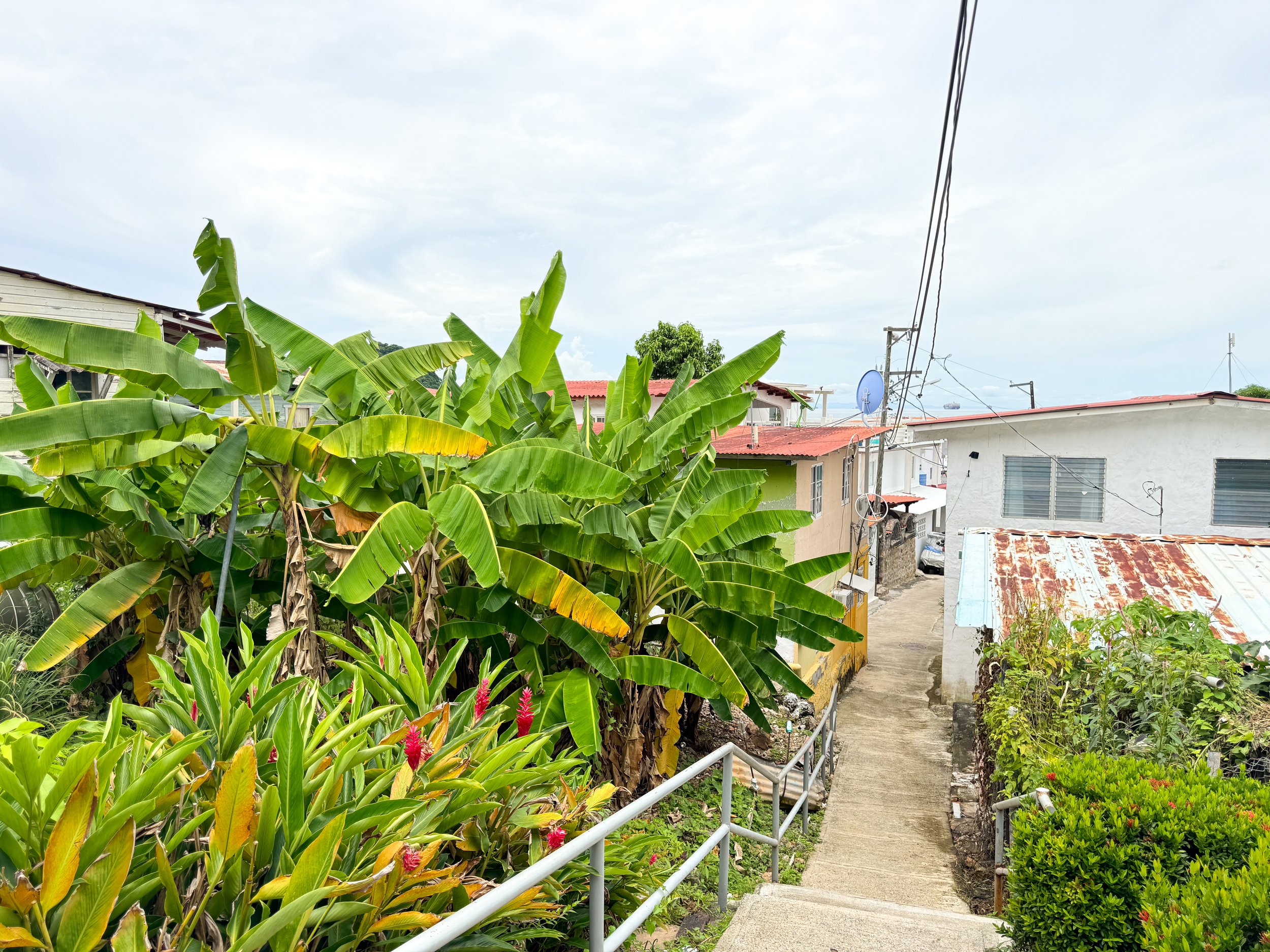
Taboga Island
The City of Taboga. Taboga is a colorful town built into the lush hillside of the island with laidback vibes, beaches and hiking trails. Here, locals drive around on golf carts and say hola (hello) or buenas (short for good day) as they pass by. The narrow streets and alleyways are lined with flowering trees and bushes with many light boxes housing statues of the Virgin Mary.
Playa La Restinga. A clean sandy beach that bridges Taboga and Morro Islands with views of the ship dotted harbor and Panama City skyline in the distance. The shore is covered in pink and white sea shells seen as decor on houses across the island. There are vendors selling beachwear, serving piña coladas in pineapples, preparing fried seafood and renting umbrellas, lounges and boats.
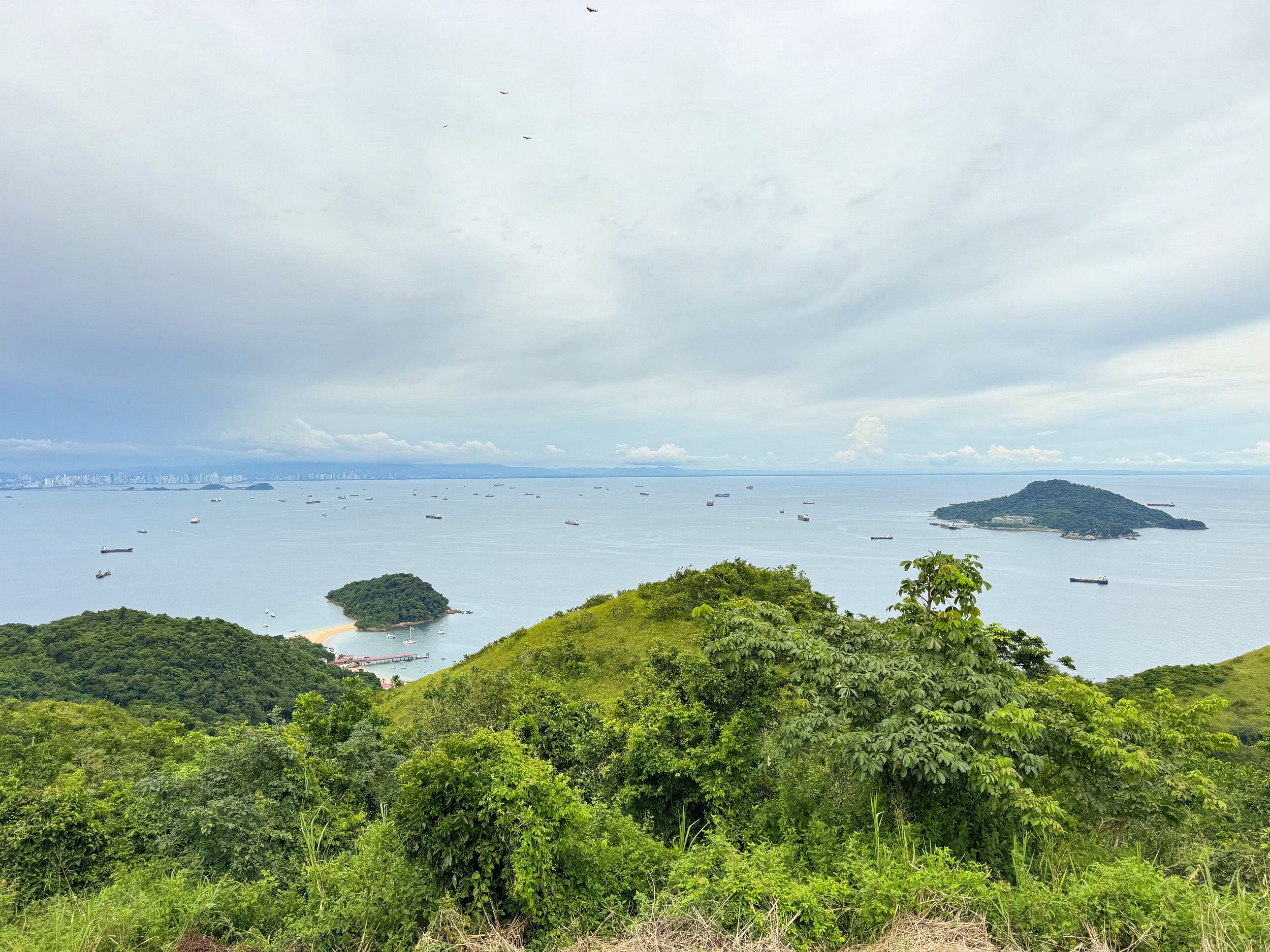
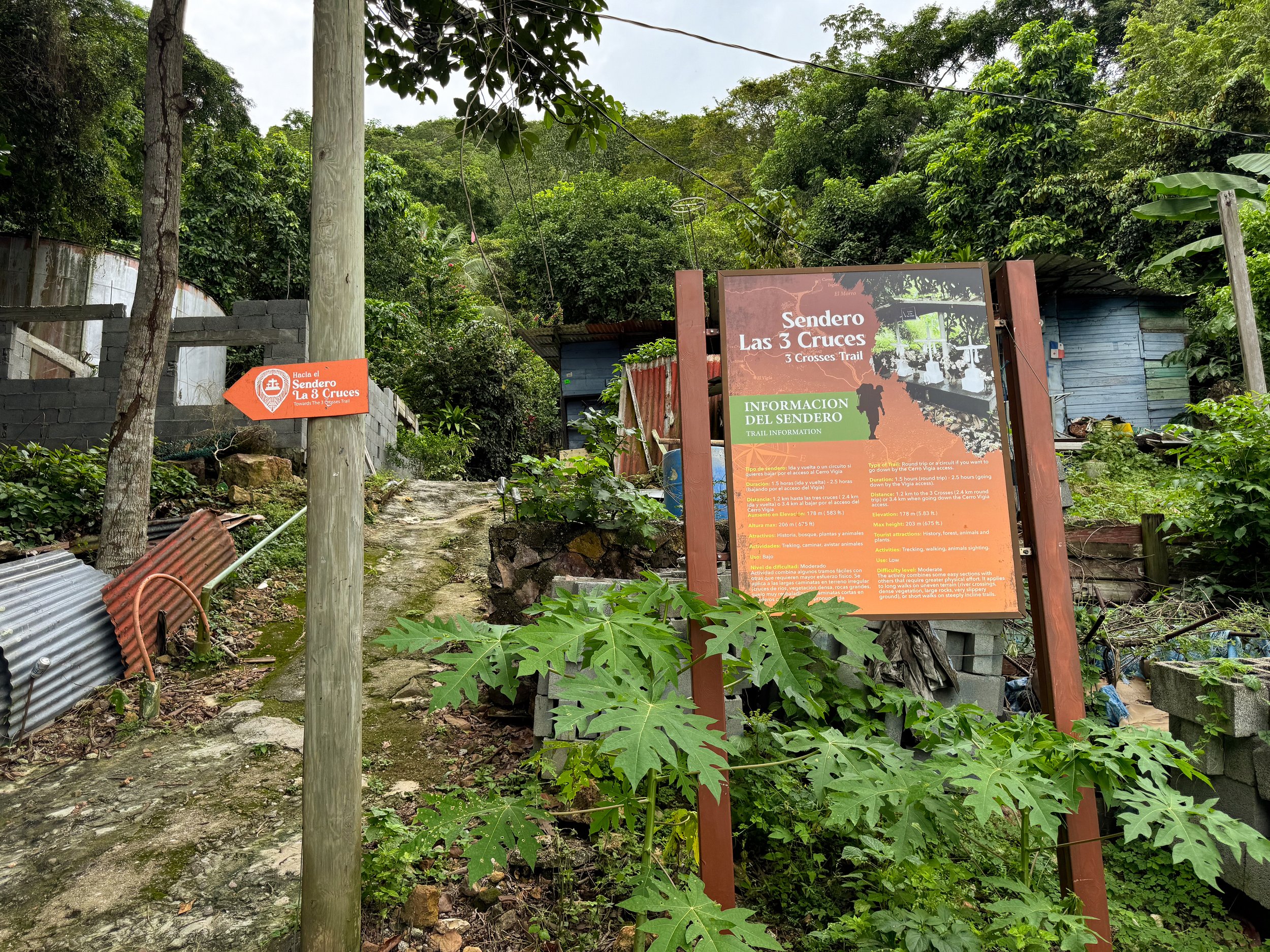
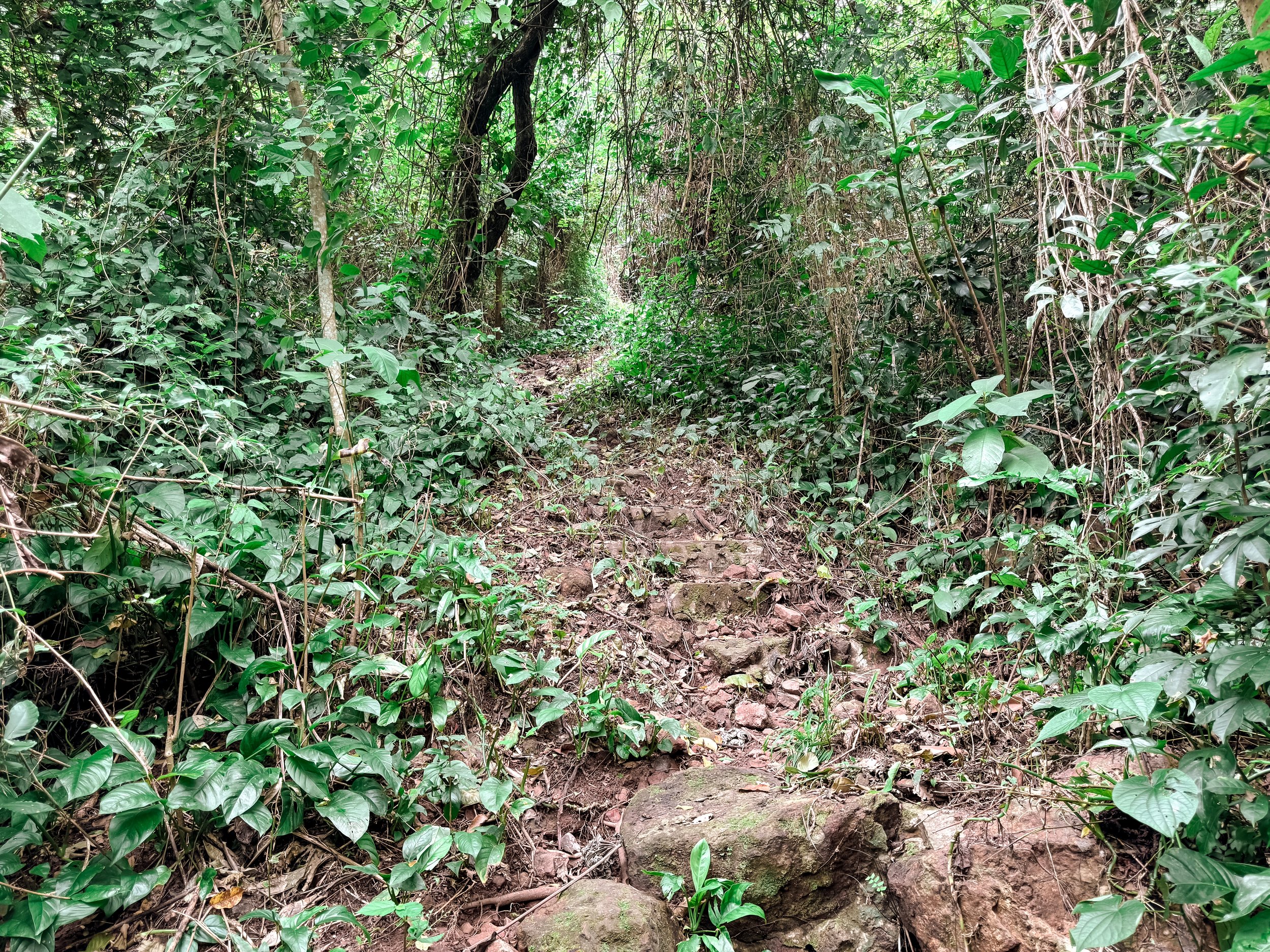
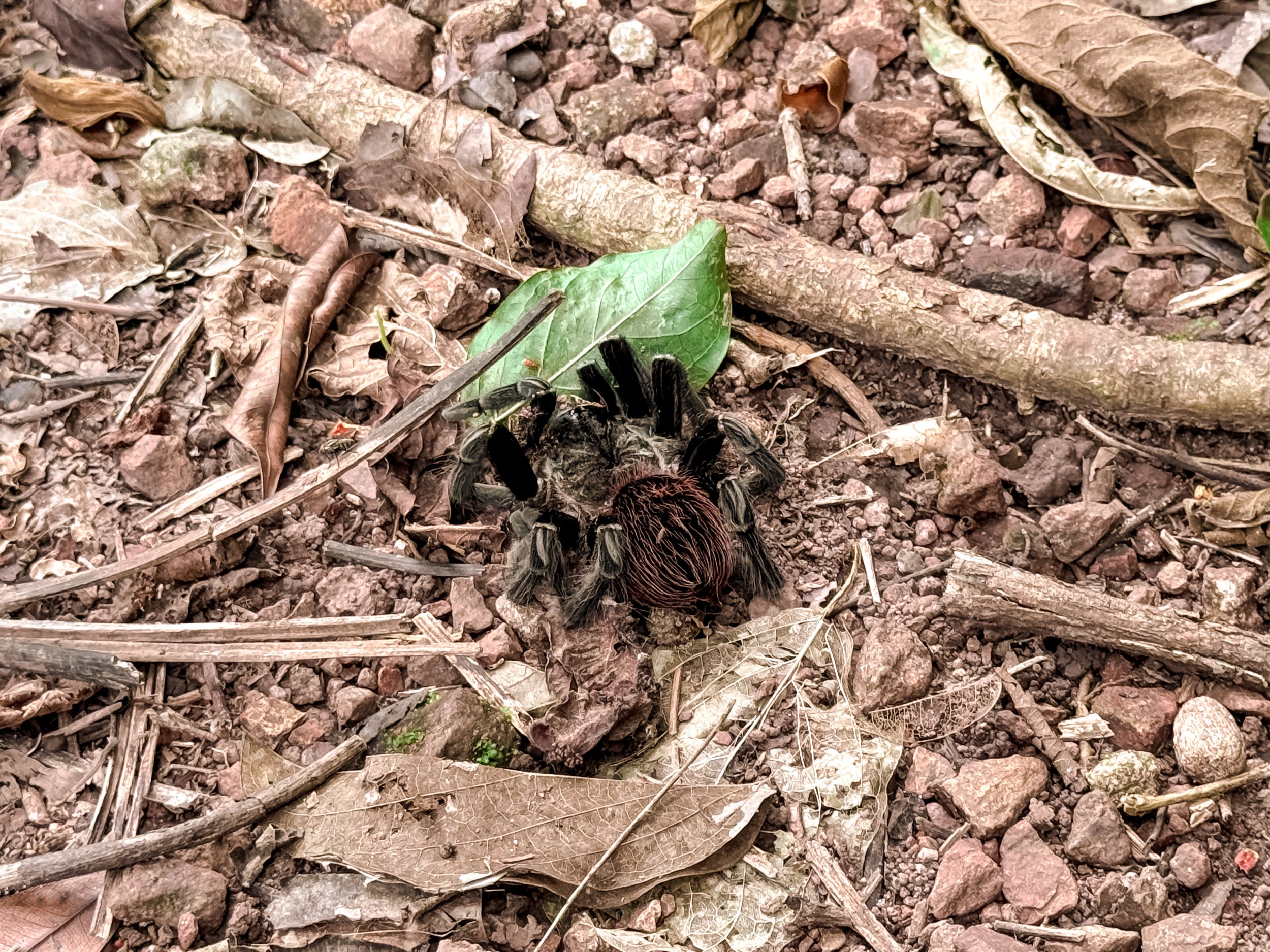
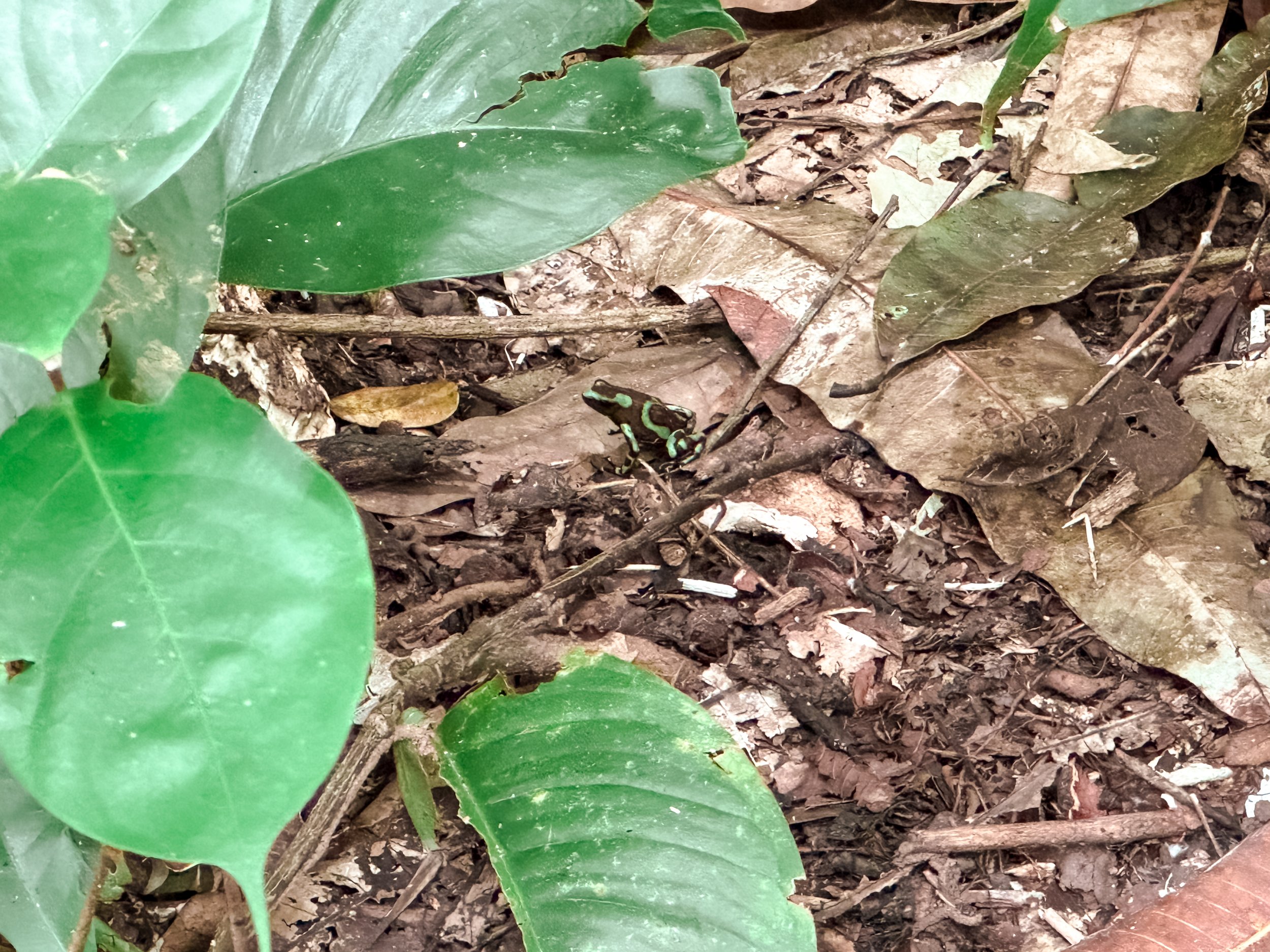
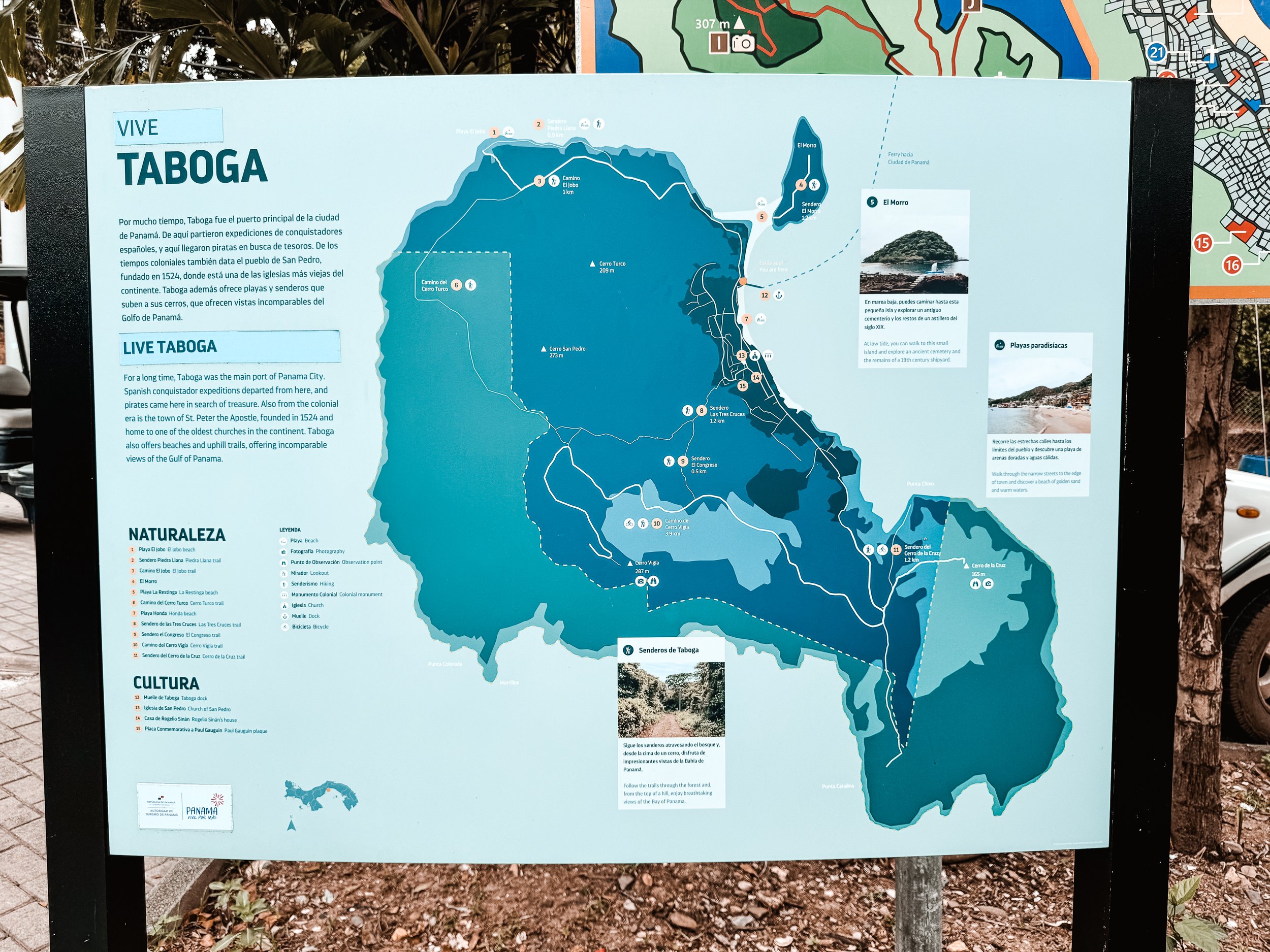
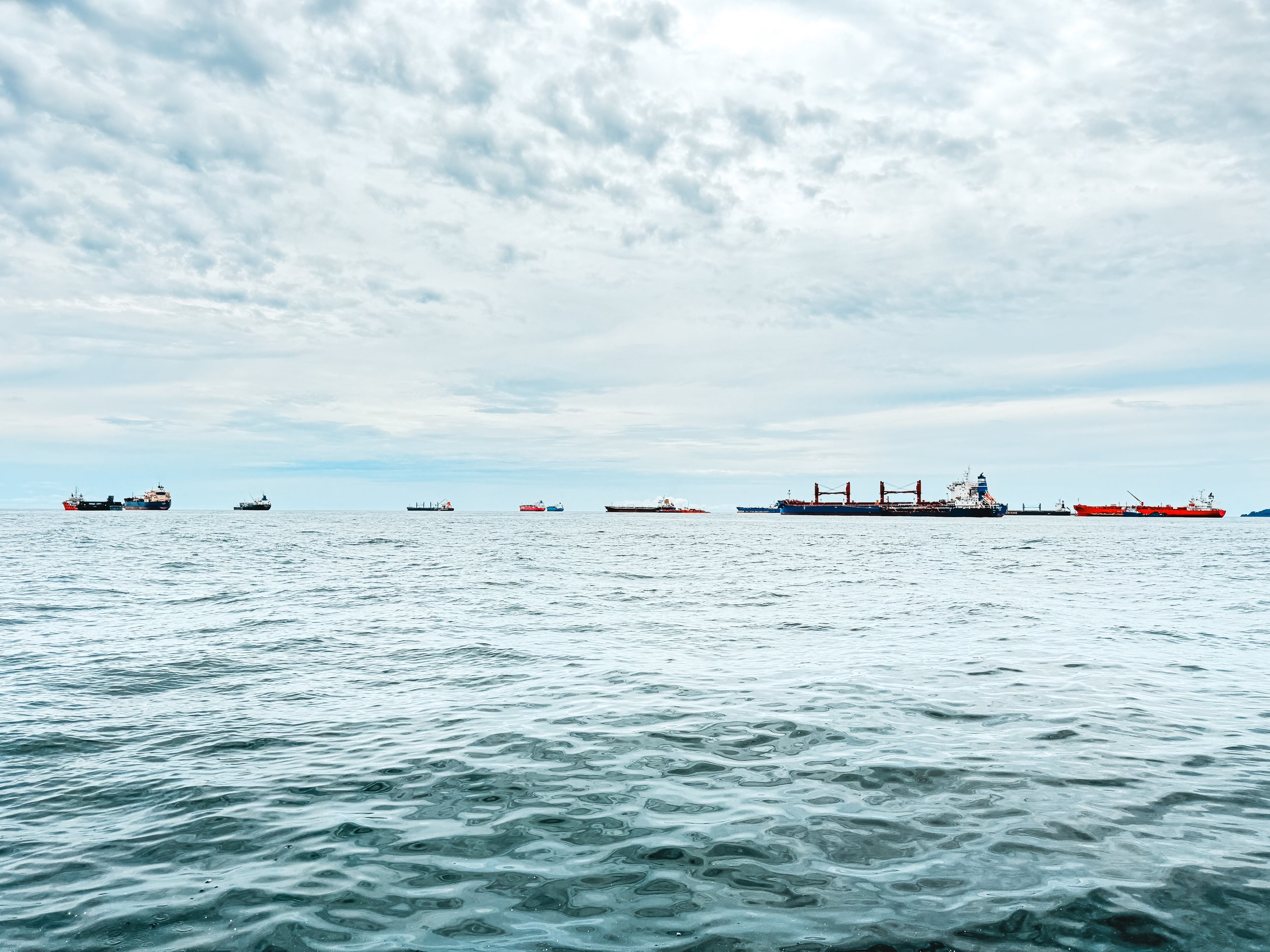
Sendero de Tres Cruzas. Following the winding walkways up the hillside, we reached the trail head. The trail leads deep into nature so much so that you forget about that a sprawling metropolis is still nearby. As we hiked through the humid forest, we heard the sounds of breaking of branches, the falling of fruit, bussing insects and squawking birds. Along the way, we spotted tarantula, numerous neon green and black poison tree frogs, large iridescent blue butterflies, skittish lizards and spiraling vortexes of vultures.
Cerro El Vigía. Sendero de Tres Cruzes leads to an uphill but easy to walk road to the island’s summit, Cerro El Vigía. From the summit, the town of Taboga is dwarfed by the panoramic views of the lush island, hundreds of ships anchored in the bay and city beyond.
Getting Here: Visiting Taboga is an easy day trip from Panama City. We took the Taboga Express Ferry from the Amador Causeway. Along the 30min boat ride, the ferry passes dozens of anchored freighters and ships from all over the world waiting to enter the Panama Canal.
What to Eat & Drink
Cuisine
Ceviche. White fish cured in lime juice with peppers, red onion and cilantro. It’s one of the most poplar dishes seen at restaurants across Panama.
Corvina. A white fish popular in Panama. It’s often grilled or fried whole.
Paella. A pan rice dish cooked in a pan with broth, spices, veggies, and meat. It’s also called One Pot on the Caribbean side of the country.
Patacones. Twice fried and smashed plantain.
Rice & Beans. The classic Central American dish made from the two ingredients with spices.
Hojaldra. Fried dough often served at breakfast.
National Beers
Balboa. A semi nutty bear similar to a Modelo.
Panamá. A light beer similar to a Bud Light.
San Felipe. A pretty standard and easy drinking lager.
Where to Stay
La Manzana. A large mixed use building with modern apartment rentals, artist studios and a co-working space. It’s a quick 10 minute walk through the arts district to Casco Viejo. We stayed in well equipped and designed a studio here during our time in Panama City. Book here on Airbnb.
Getting Around
By Metro. Panama City has a very modern and efficient metro system with two lines crossing town. We took the metro from the airport to just outside of Casco Viejo neighborhood.
By MetroBus. Buses are the most economical way to navigate the Panama City though inefficient. Expect to wait a minimum of 30 to 45 minutes for most lines.
Albrook Station. Panama’s Central Terminal for the metro and buses. City buses from here are generally efficient and affordable. There are routes from here to destinations across Panama.
Tarjeta Recargable Para Metro y Metrobus. Buy a re-loadable card at any metro station for $2. Fares cost around $0.25 to $0.50 for both metro and metrobus.
Yellow Cabs. Taxis are all over the city. Drivers looking for fares will often tap their horn looking for passengers as they drive around the city.
Uber. A secure alternative to taxis. Fares cost $1-$10 to get around the city depending on distance and time of day or $20-$30 to/from the airport.
On Foot. Casco Viejo is very walkable. Any further distances will require public transit or an Uber.
Panama Stop Over
We booked our flights with Copa Airlines taking advantage of their stopover program when transiting through Panama City. The airline paid for our flight to Panama City in route to your our destination. Stopovers can last anywhere from a minimum of 24 hours to a maximum of 7 days. We stayed the full 7 days. This saved us hundreds of dollars on flights and allowed us to visit a county that’s been on our list for years!
Good To Know
Currency: Panama uses the Panama Balboa and US dollar interchangeably. They are valued equally.
Toilets: Like many places in Central and South America, the plumbing can’t handle toilet paper. If there is a bin next to a toilet, that’s where it’s intended to go.
Language: Spanish and English are widely spoken by most people, restaurant menus and most museums have descriptions in both languages.
Ticket Prices: The costs for foreign tourists at most sights and museums are about 20-30% higher.
Tipping: 10-15% is standard for tipping
Safety: We found Panama to be a very safe country. People are friendly & helpful. There is a strong tourist police and military presence throughout Panama City, especially the old town, likely due to the president’s residence being here.
Tourism: We did not come across a single American tourist. Many people visiting came from across Panama and other country’s in South America.
LGBTQ: Panama is a very welcoming country to the LGBTQ community. We saw many other gay couples, travelers and tour operators.
For Next Time…
We loved our time in Panama and with Copa Airline’s Stopover Program, we will certainly be returning. When we do, we hope to visit more areas along the Pacific and Caribbean coasts.
Coiba National Park. A bio reserve with beaches, reefs and rainforest. Come to hike the rainforest, snorkel with marine life, swim with whale sharks, surf pacific waves, spot tropical birds, monkeys and sloths.
Bocas del Toro Archipelago. A chain of 300 plus Caribbean islands with beaches, coral reefs and surfing spots. It’s hub for Afro-Caribbean cultures with calypso, reggae and soca music and cuisine made from seafood cooked in coconuts and seasoned with spices. Popular islands to visit are Colon, the Bastimentos and Carenero.
Key West, Florida
Key West is a tropical island at the end of the Florida Keys where roosters roam free, flip flops are worn as dress shoes and beach vibes rule above all else. The key is home to many restaurants, bars, boutique hotels, historic sights, colorful wooden houses and waters dotted with sailboats.
Key West
Key West is a tropical island at the end of the Florida Keys where roosters roam free, flip flops are worn as dress shoes and beach vibes rule above all else. The key is home to many restaurants, bars, boutique hotels, historic sights, colorful wooden houses and waters dotted with sailboats.
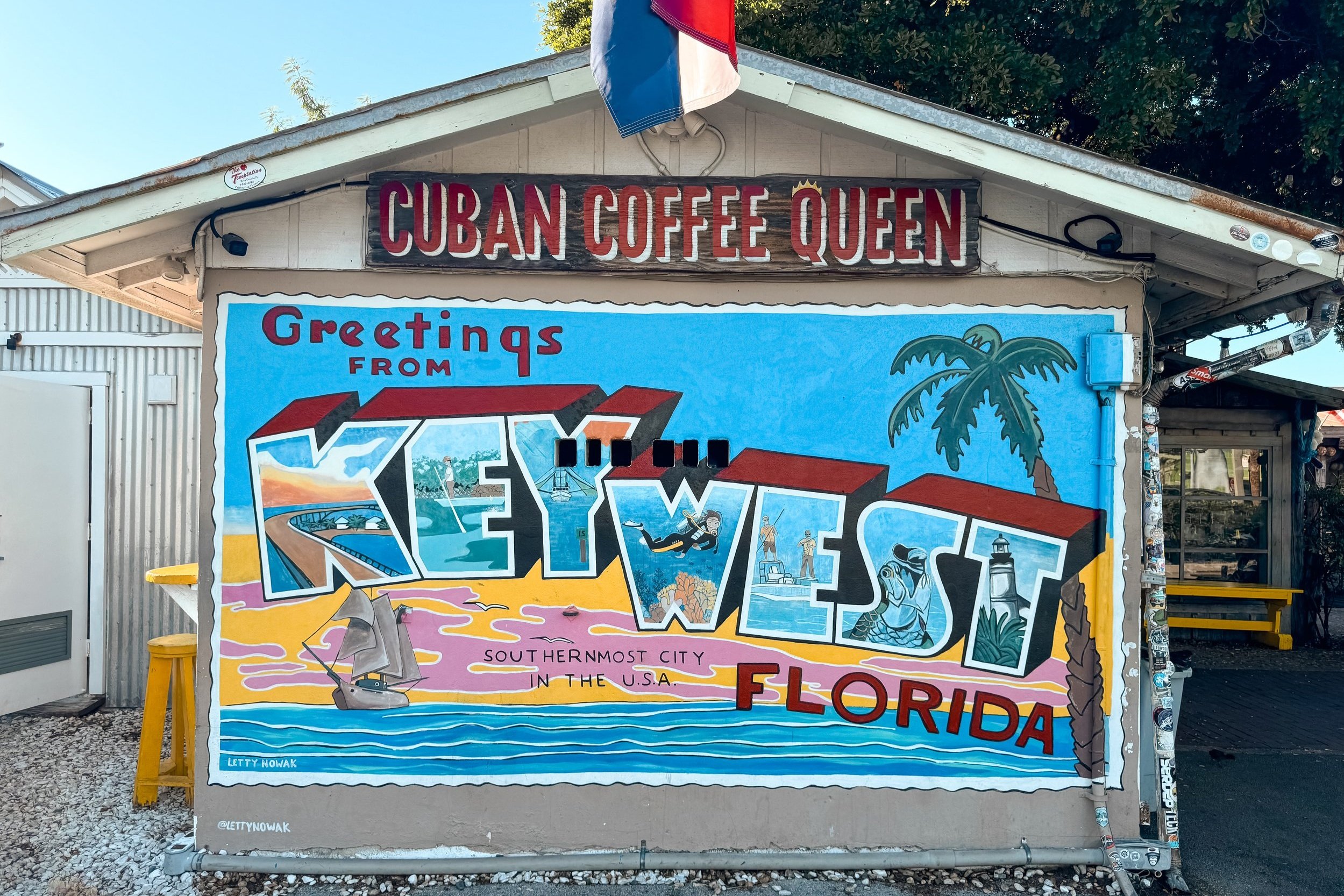
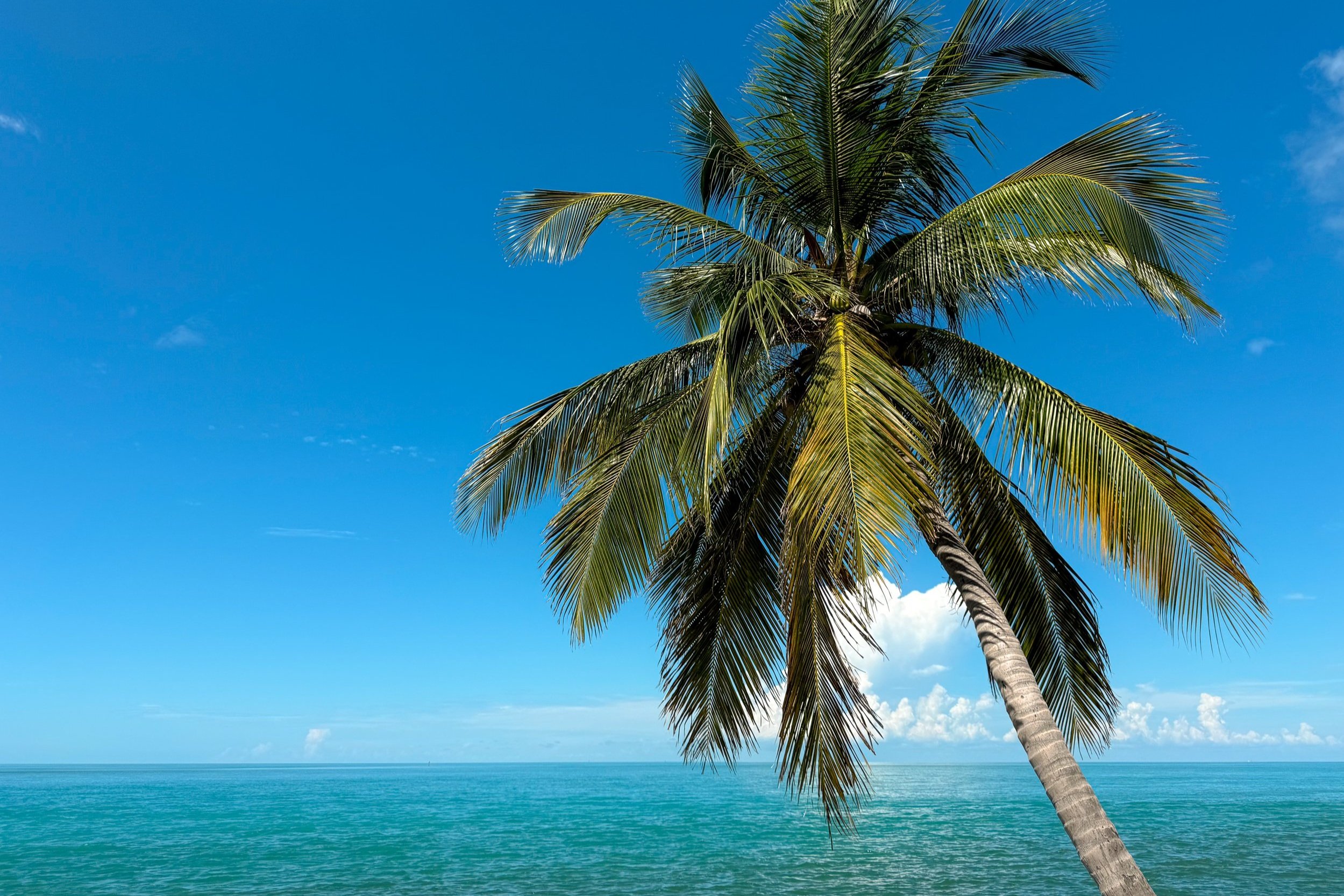
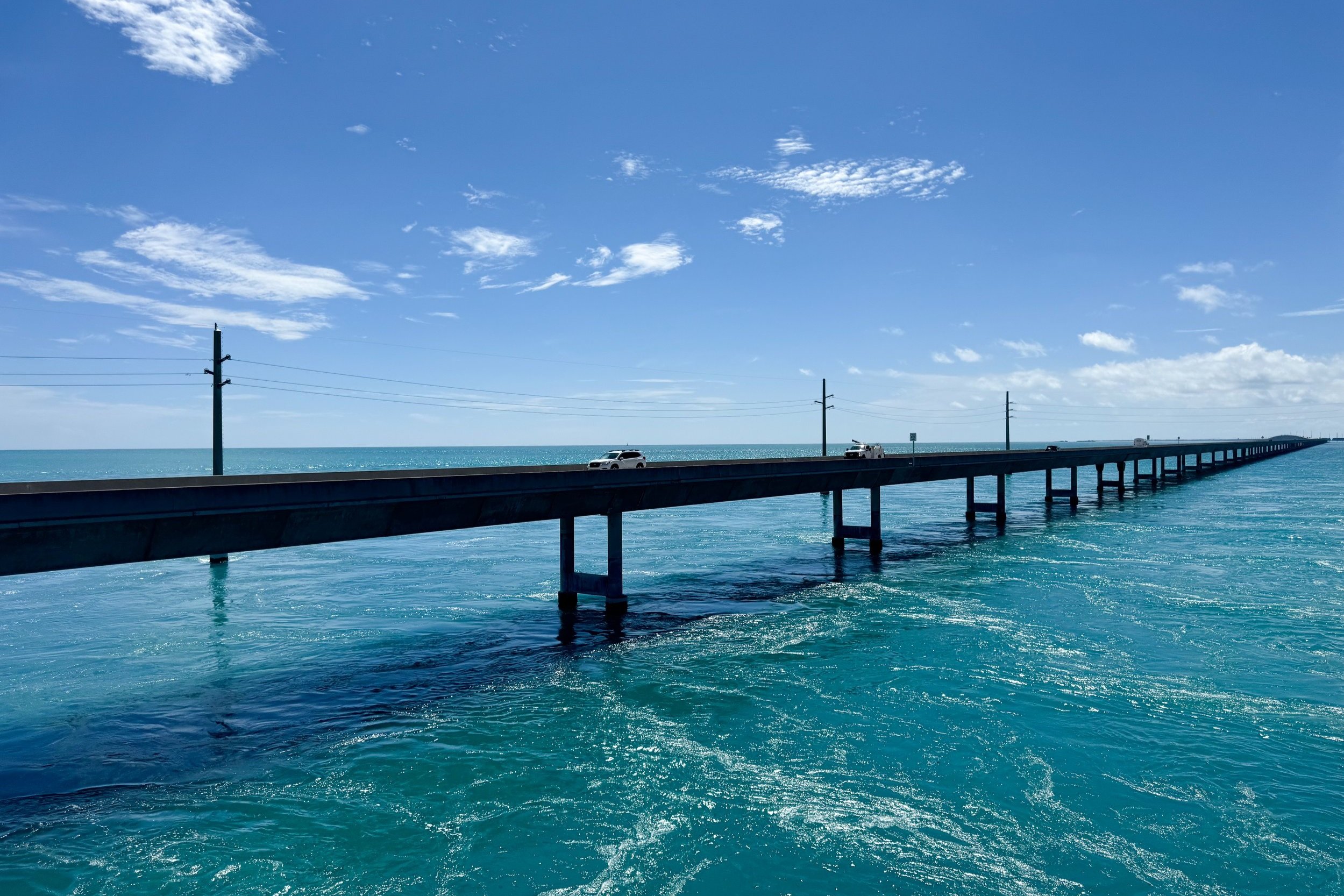
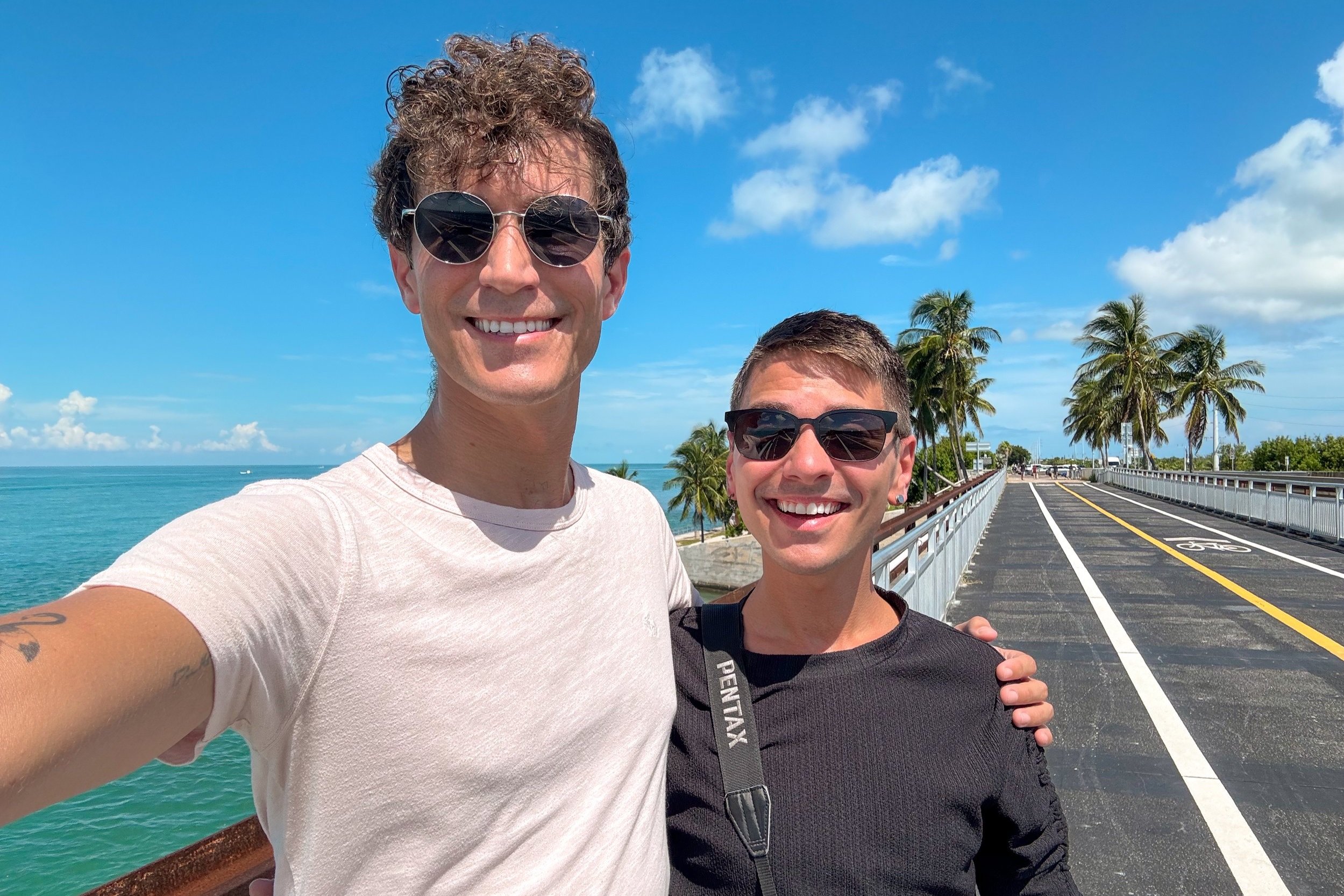
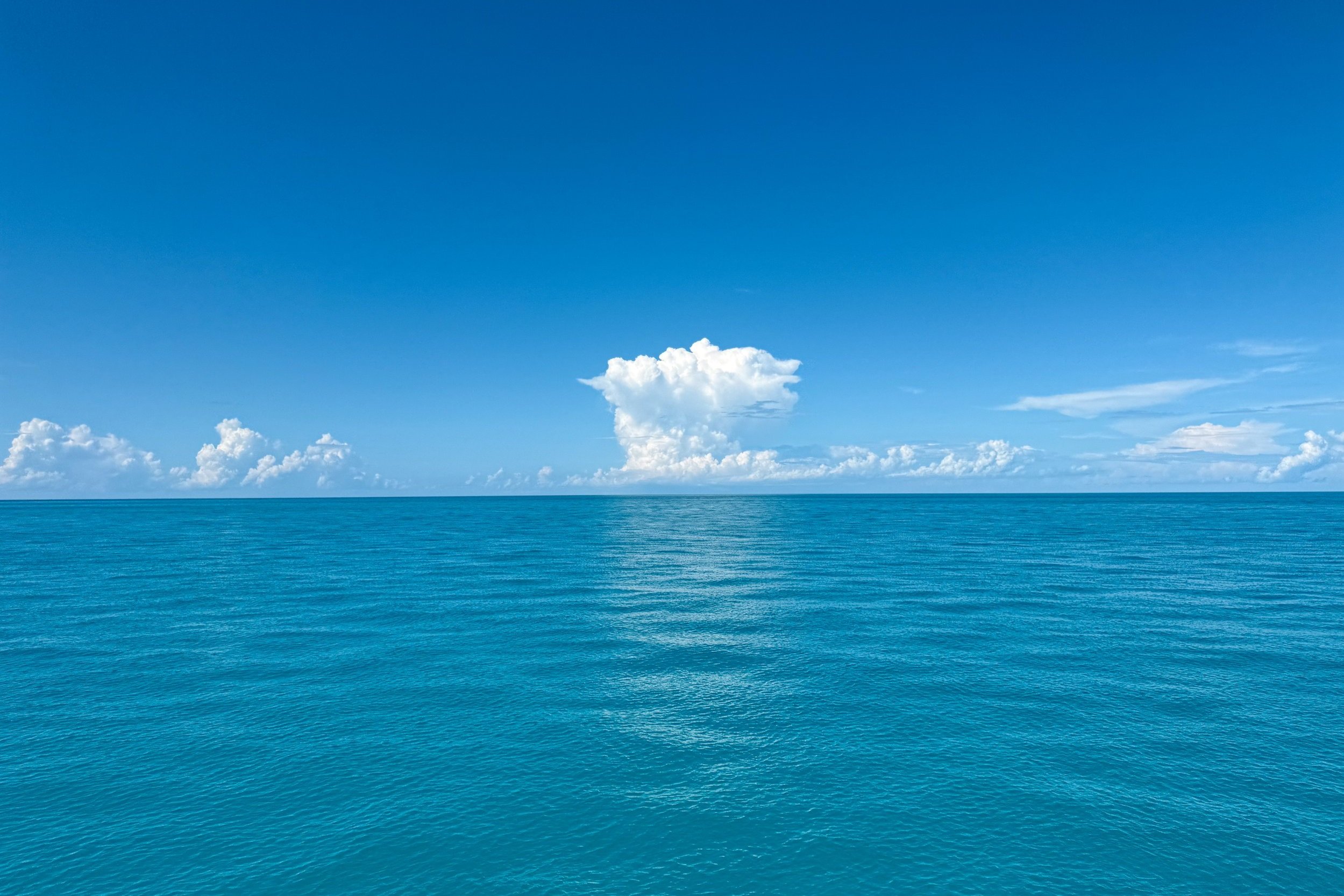
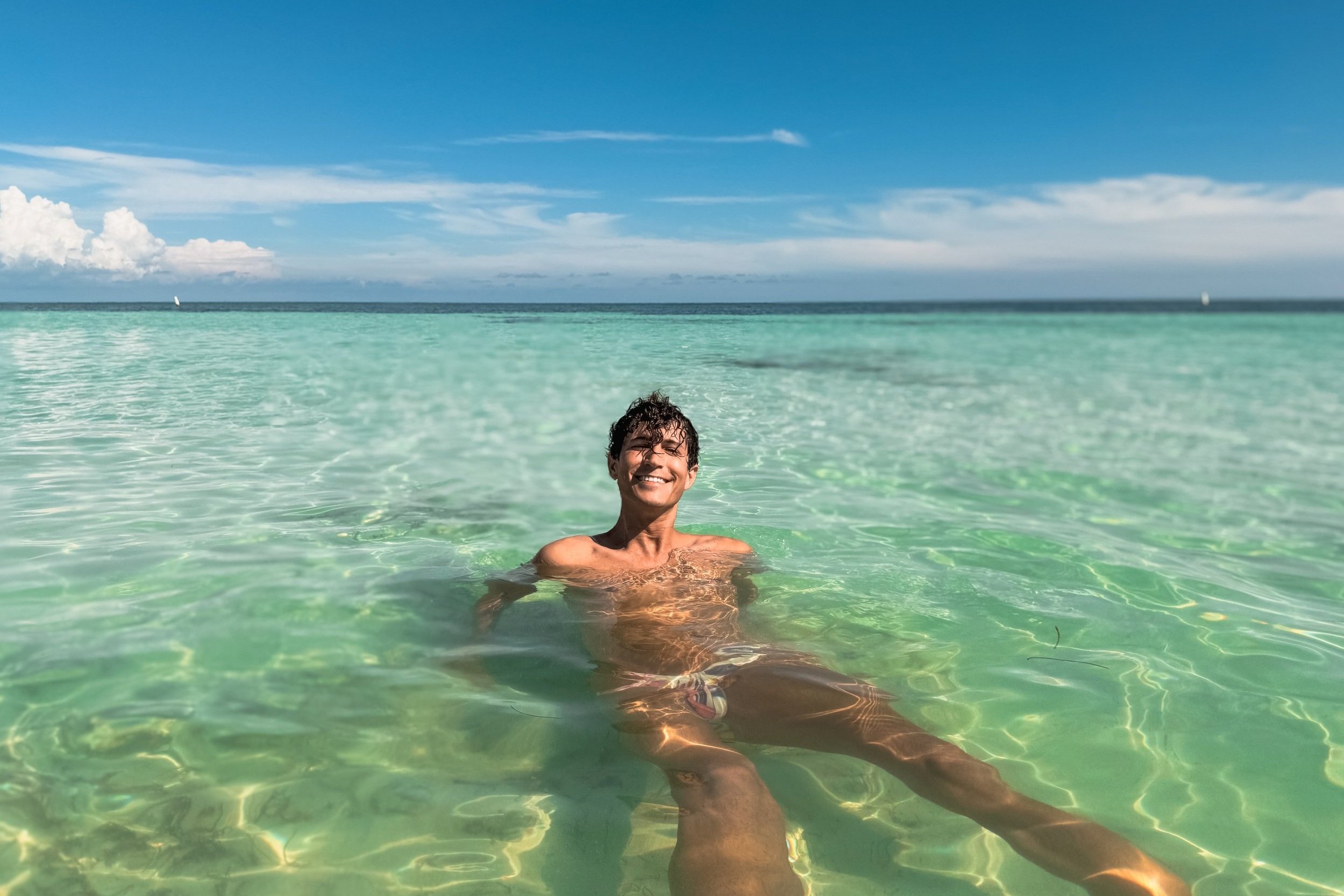

The Overseas Highway
The Overseas Highway is scenic stretch of road crossing the ocean and connecting the Florida Keys with mainland Florida. We made a day trip of our drive on the highway, stopping at multiple keys along the way.
Tiki Bar at Postcard Inn. A hotel bar on Islamorada credited with inventing the Rum Runner cocktail. We stopped for a drink to find the restaurant under renovation.
Robbie’s. We ordered a Rum Runner here and stopped to hand feed the tarpon swimming around the restaurant’s dock. For $5, we bought a bucket of fish and dangled them over the edge of the dock. Soon after, a tarpon jumped from the water snatching the fish directly from our hands.
Keys Fisheries. A restaurant on Islamorada with all manner of fresh caught seafood. We stopped here for their famous lobster ruebens.
Sea Turtle Hospital. A sanctuary to rehabilitate rescued sea turtles on Marathon Key. Tour the facility and its tanks of sea turtles. I visited here on a trip to the keys years ago.
7 Mile Bridge. A stretch of the overseas highway crossing 7 miles of open ocean. Stop at the 7 Mile Bridge Vista to walk onto the pedestrian bridge and overlook and the blue tropical seas. We spotted manatees swimming here.
Bahia Honda State Park. We stopped here for some afternoon sun and beach time. We lounged in the shallow waters of Loggerhead and Sandspur beaches.
Big Pine Key. One of the last keys before reaching Key West. We kept an eye out for the Key Deer, an endangered species of tiny deer native to the island.
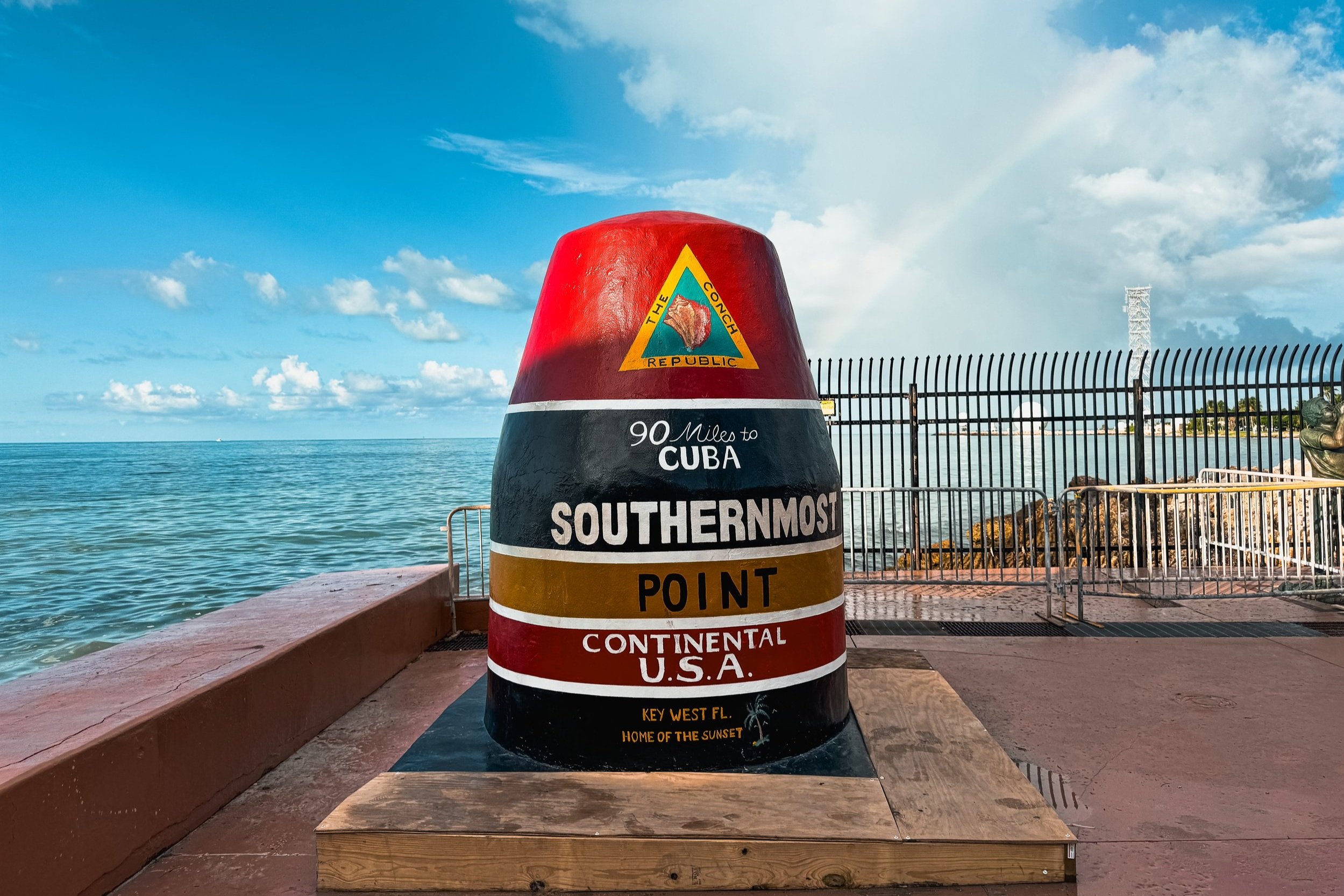
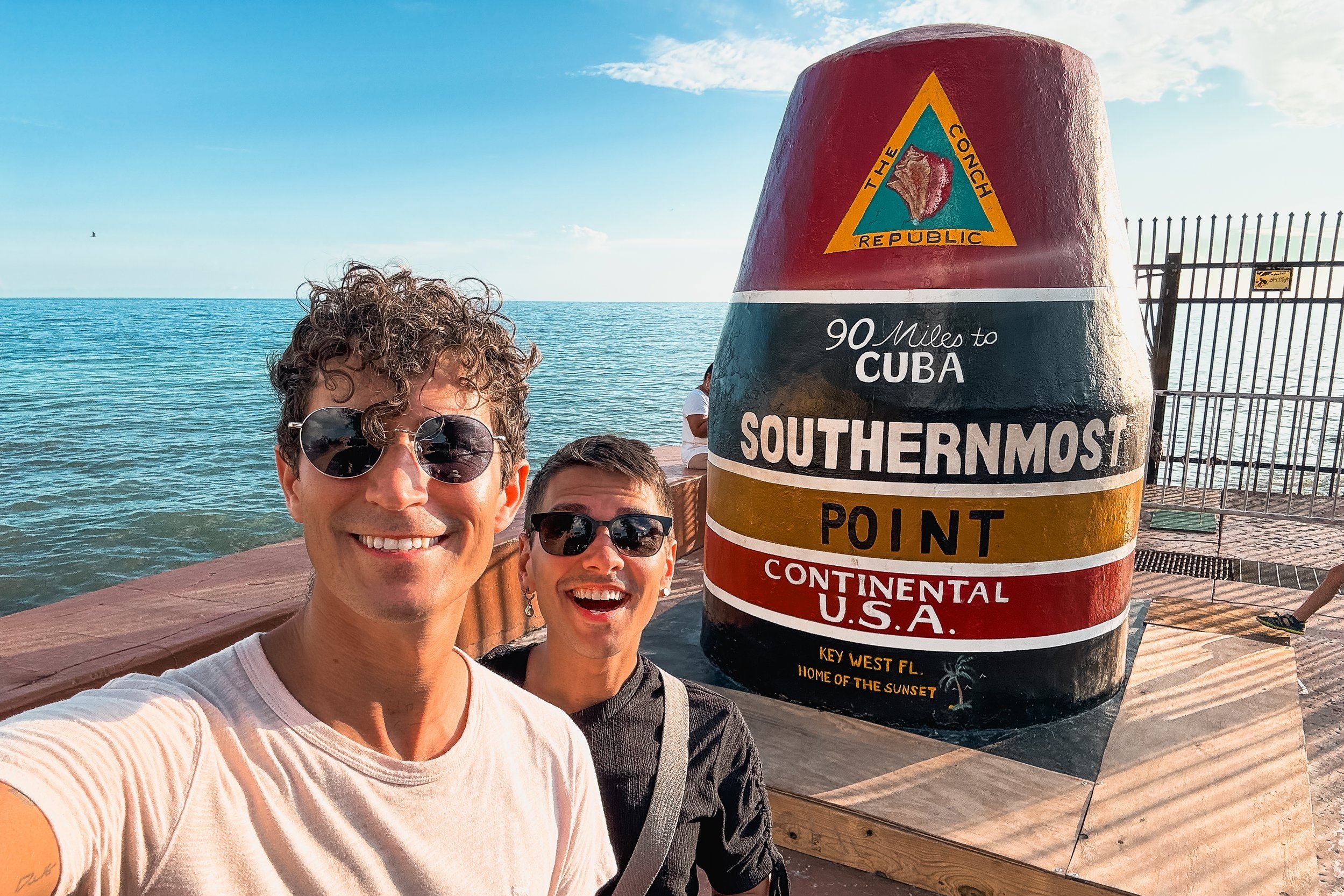
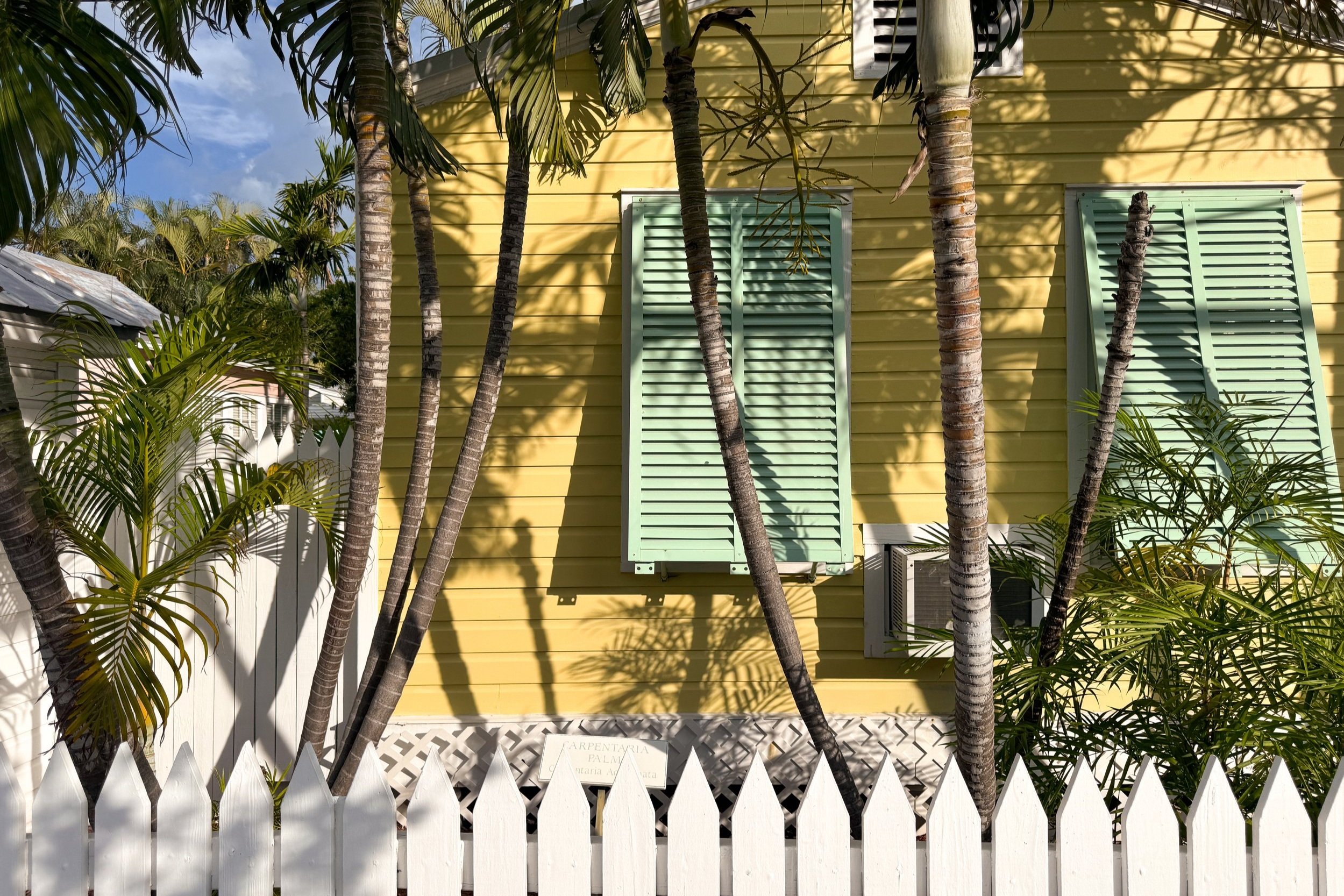
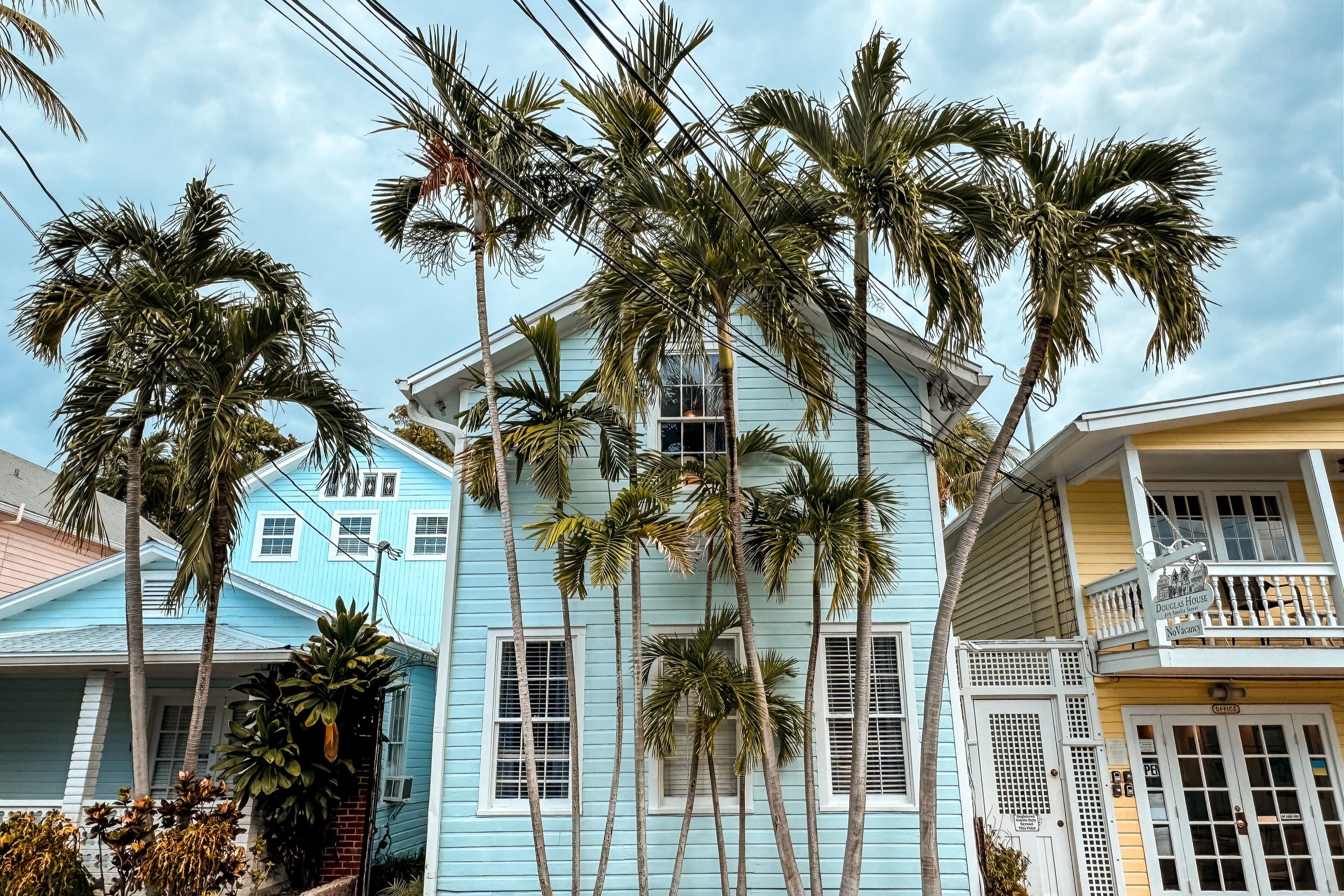
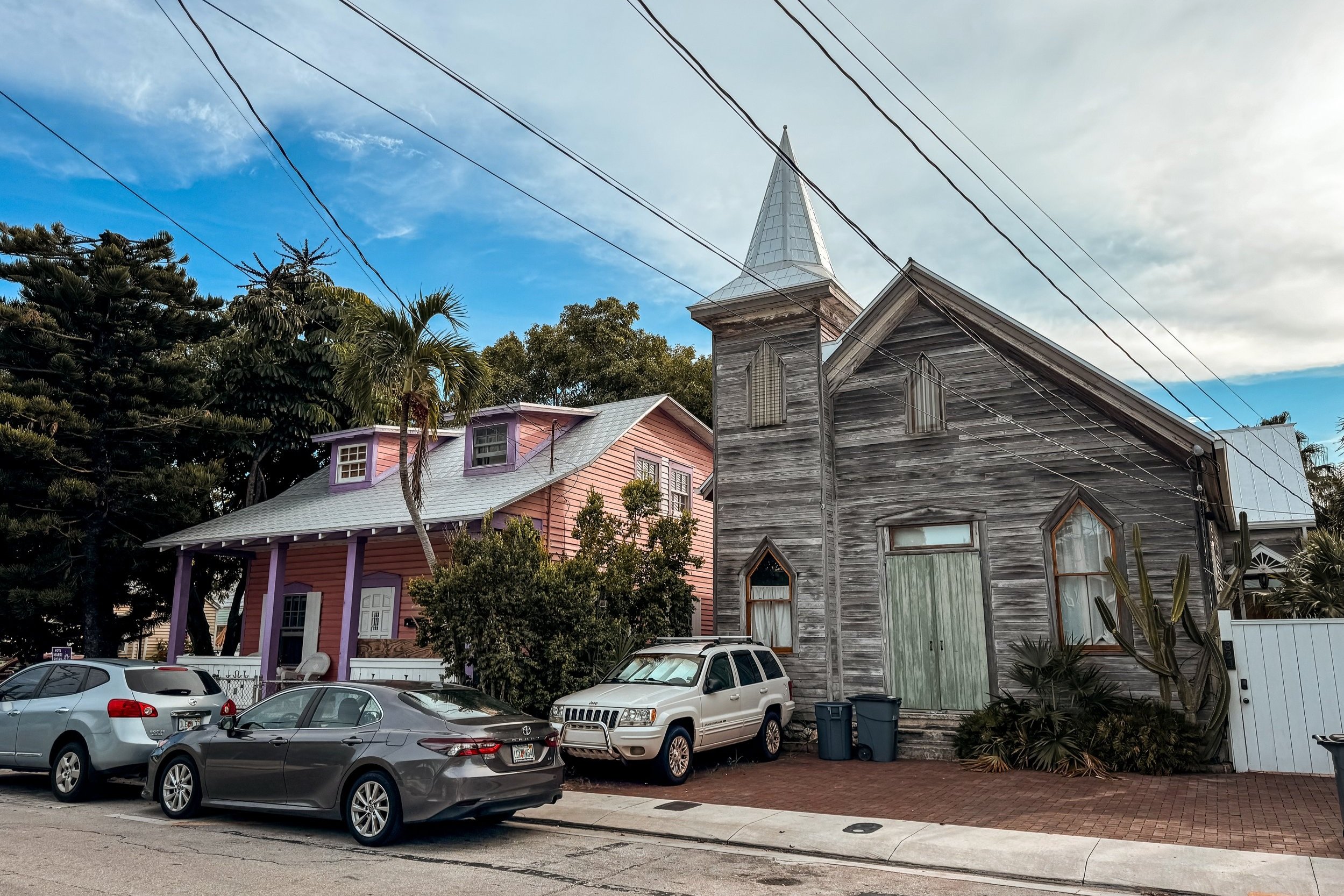
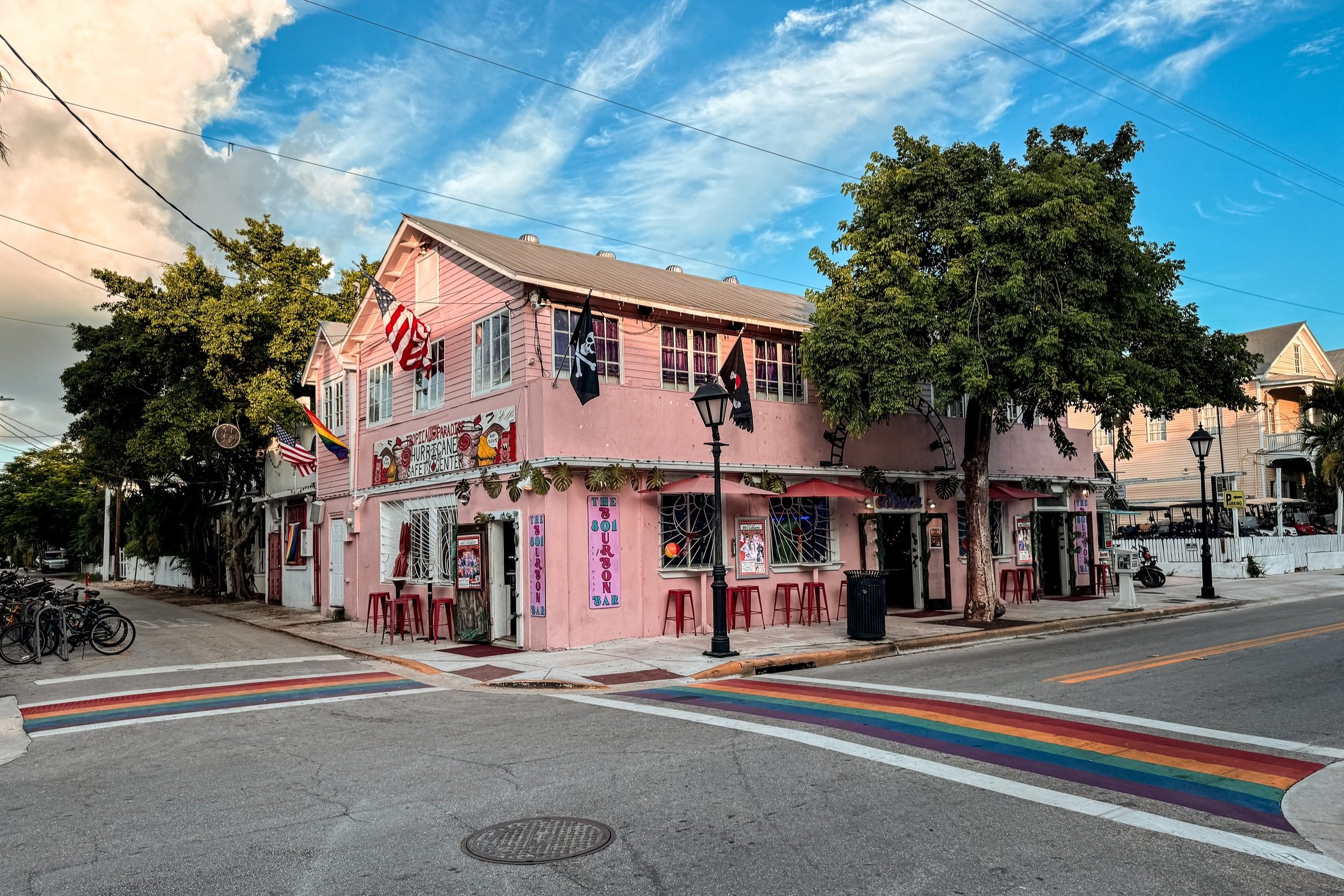
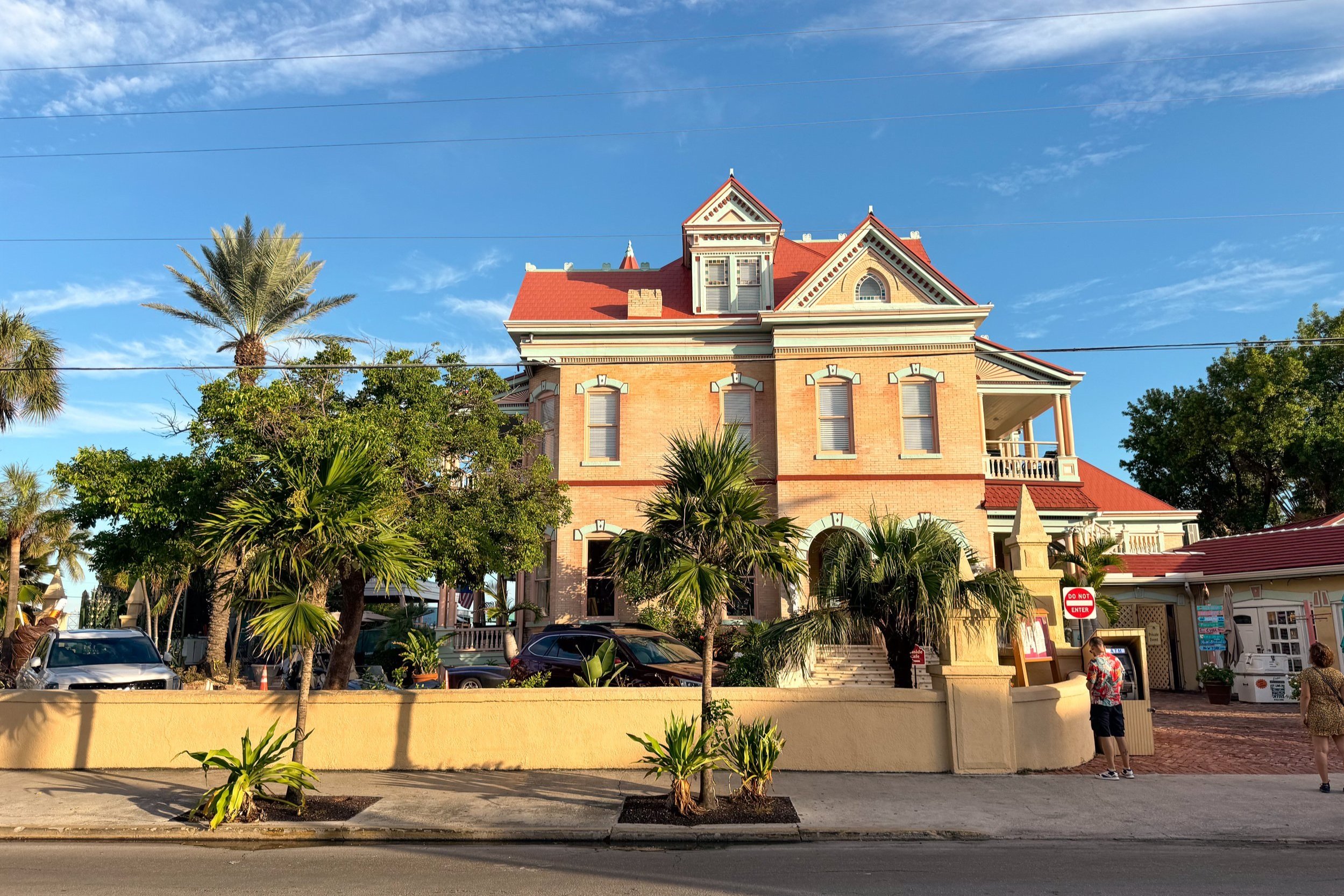
The Conch Republic
Key West, also called The Conch Republic, is truly an island paradise! While here, eat fried conch fritters and conch ceviche from one of the islands many restaurants, buy a conch shell from a souvenir shop and spot Conch Republic flags flying from local’s homes.
Sights
Duval Street. A famed and historic street stretching a mile across the key with seafood restaurants, cocktail bars, Cuban cafes, art galleries and souvenir shops.The north end is the most touristy while the south end is quieter and more local.
The Old Town. A historic area with colorful wooden house located at the north end of Duval street.
Southern Most Point Buoy. A striped concrete buoy and monument marking the southern most point in the continental US only 90 miles from Cuba.
Bahamas Village. A neighborhood in the south side of the key settled by immigrants from the Bahamas. Come to see the colorful houses and tropical gardens.
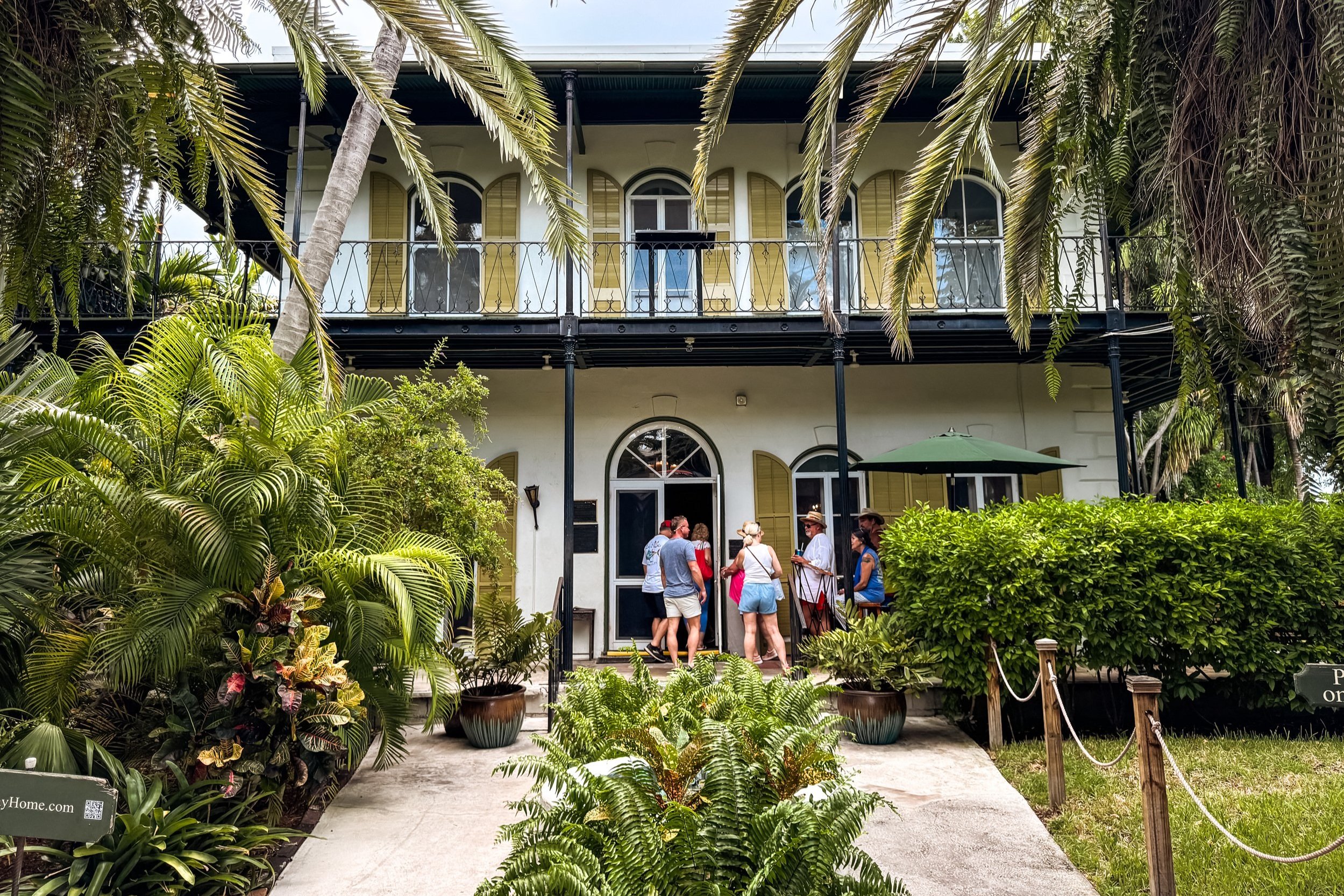
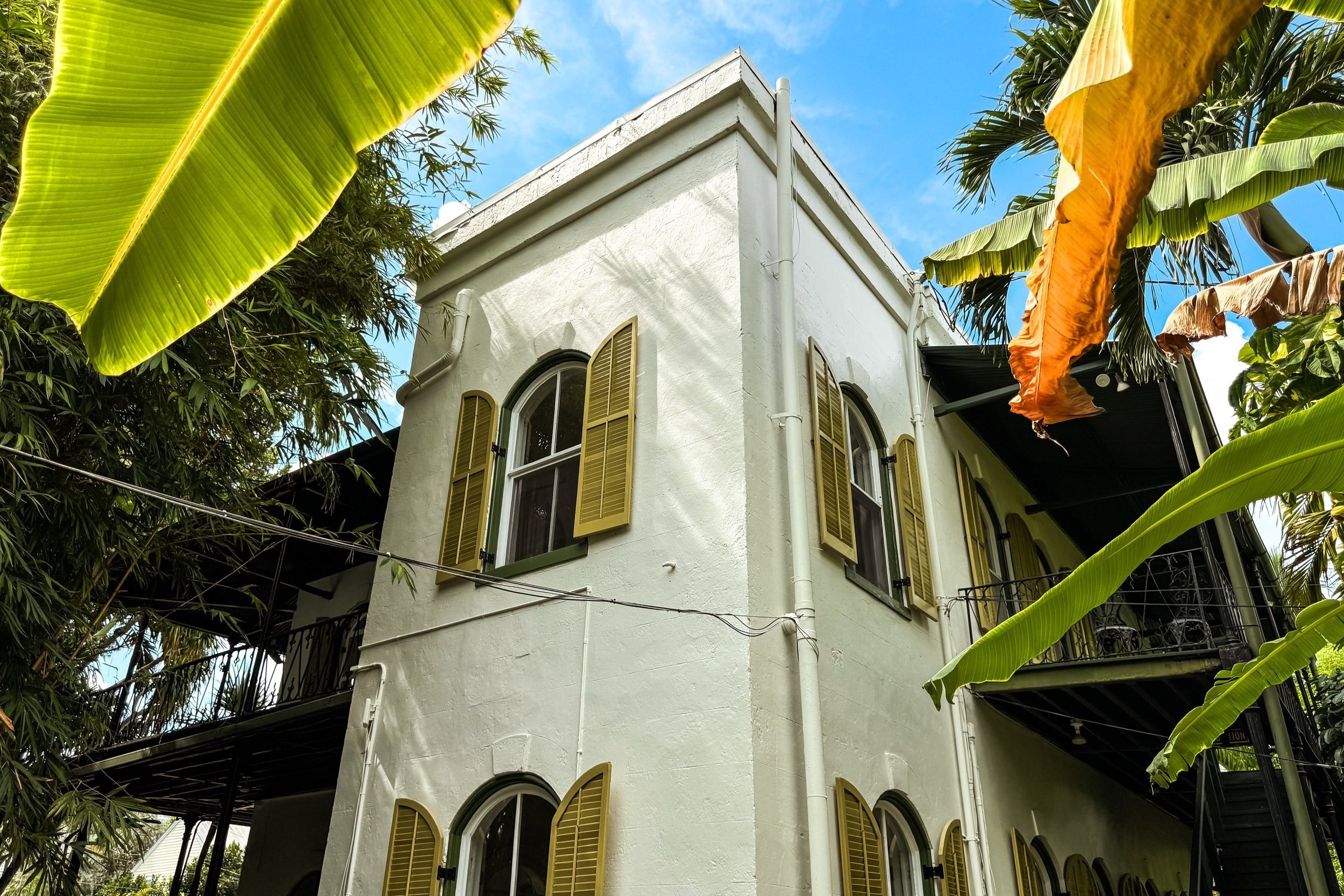
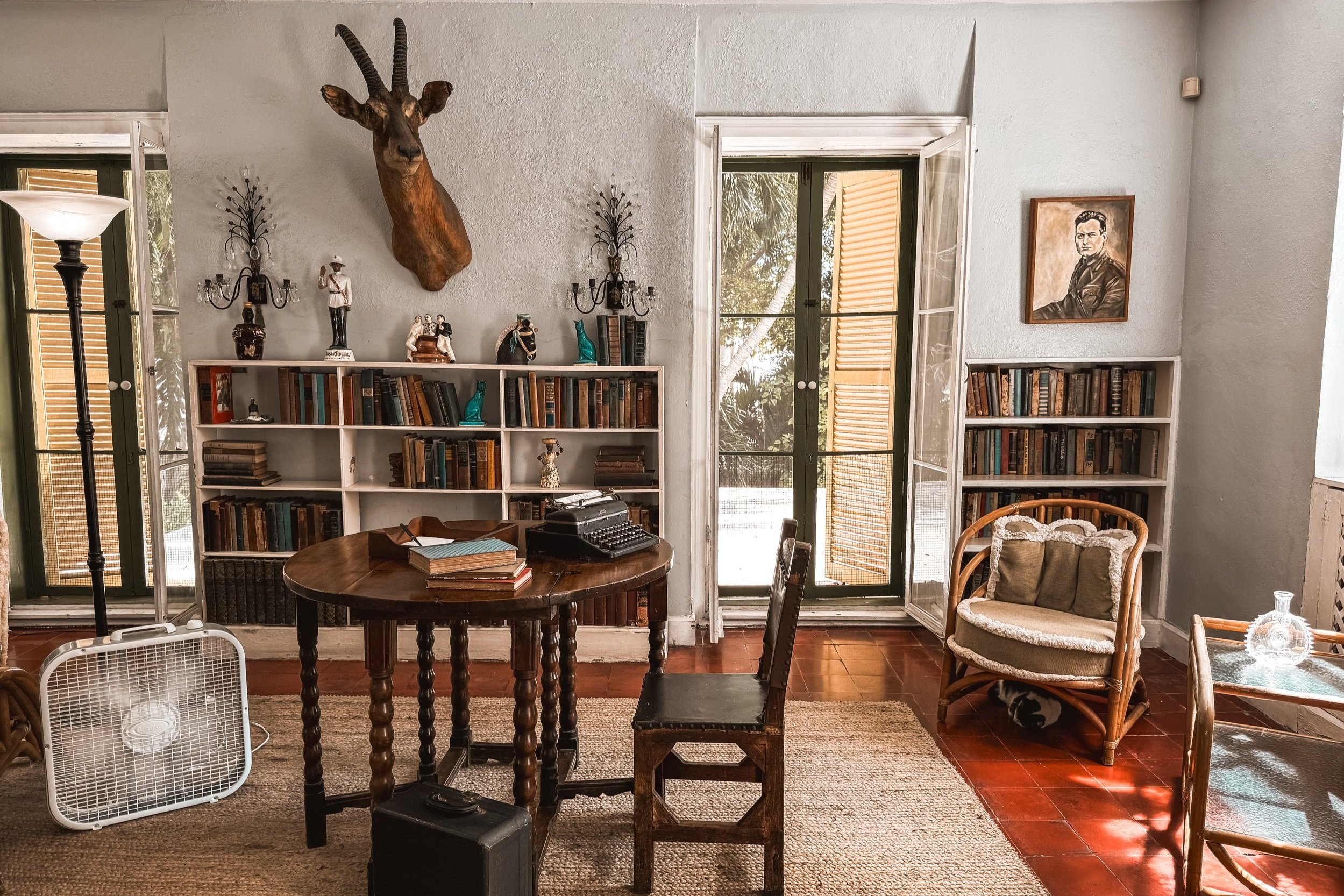
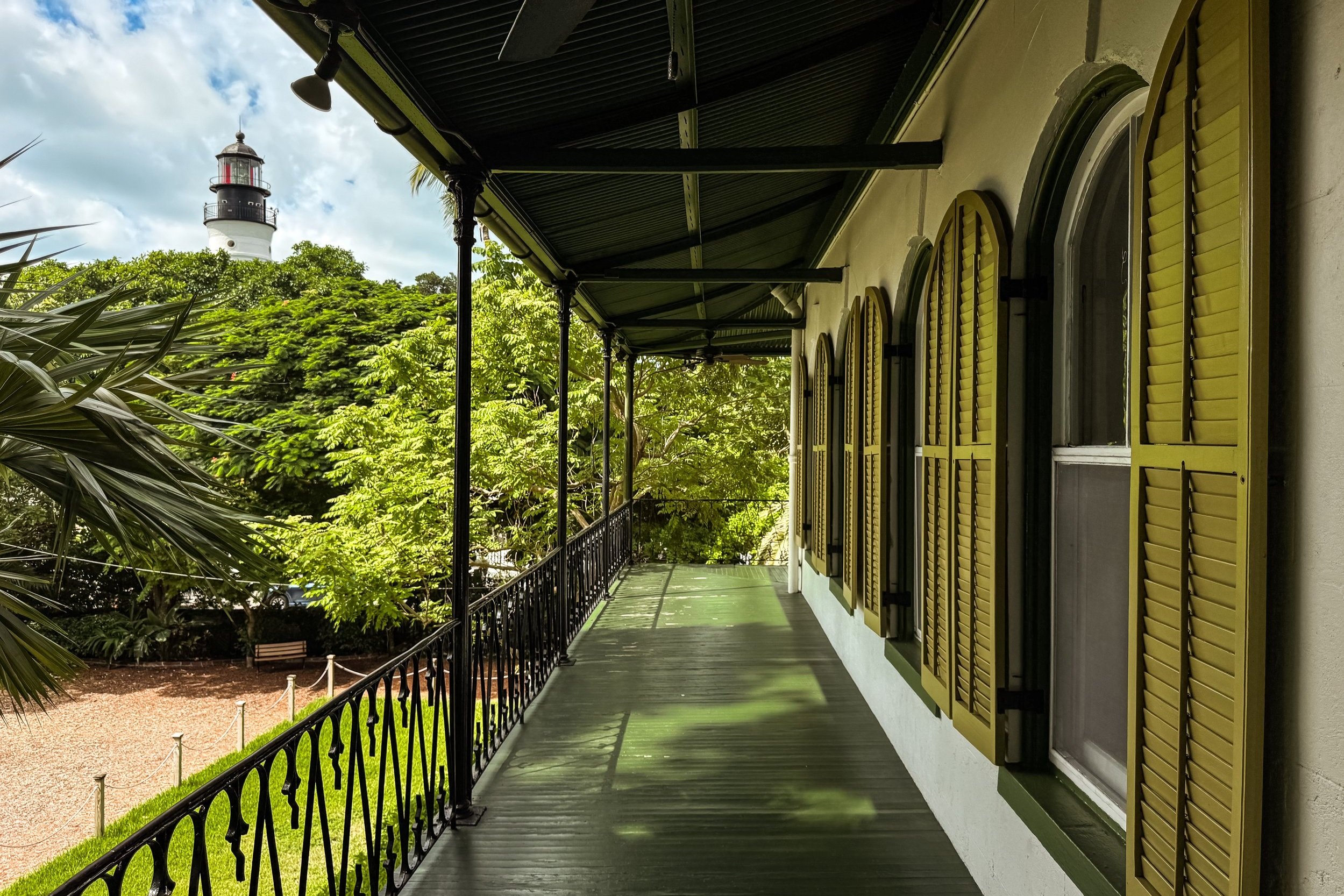
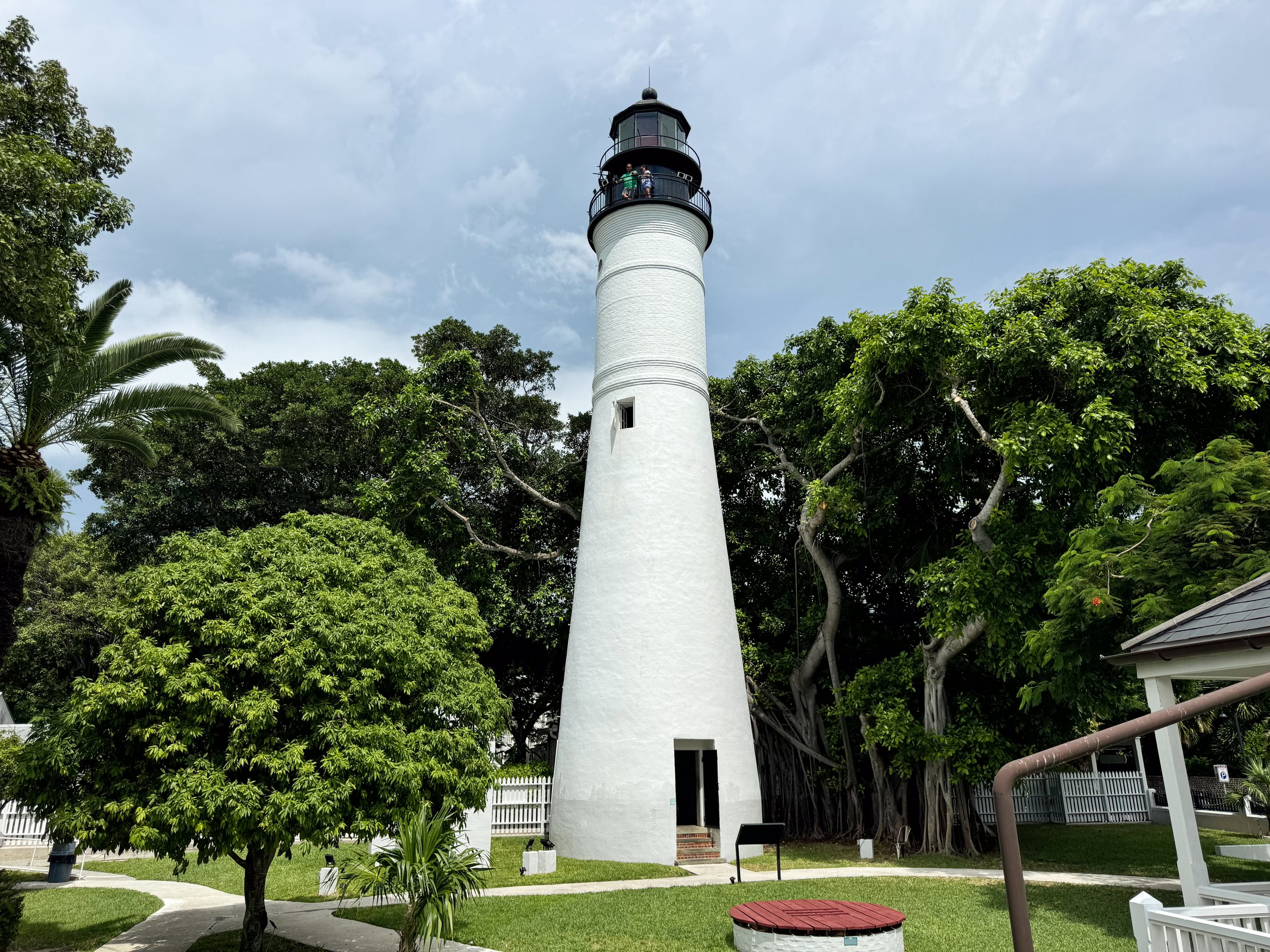
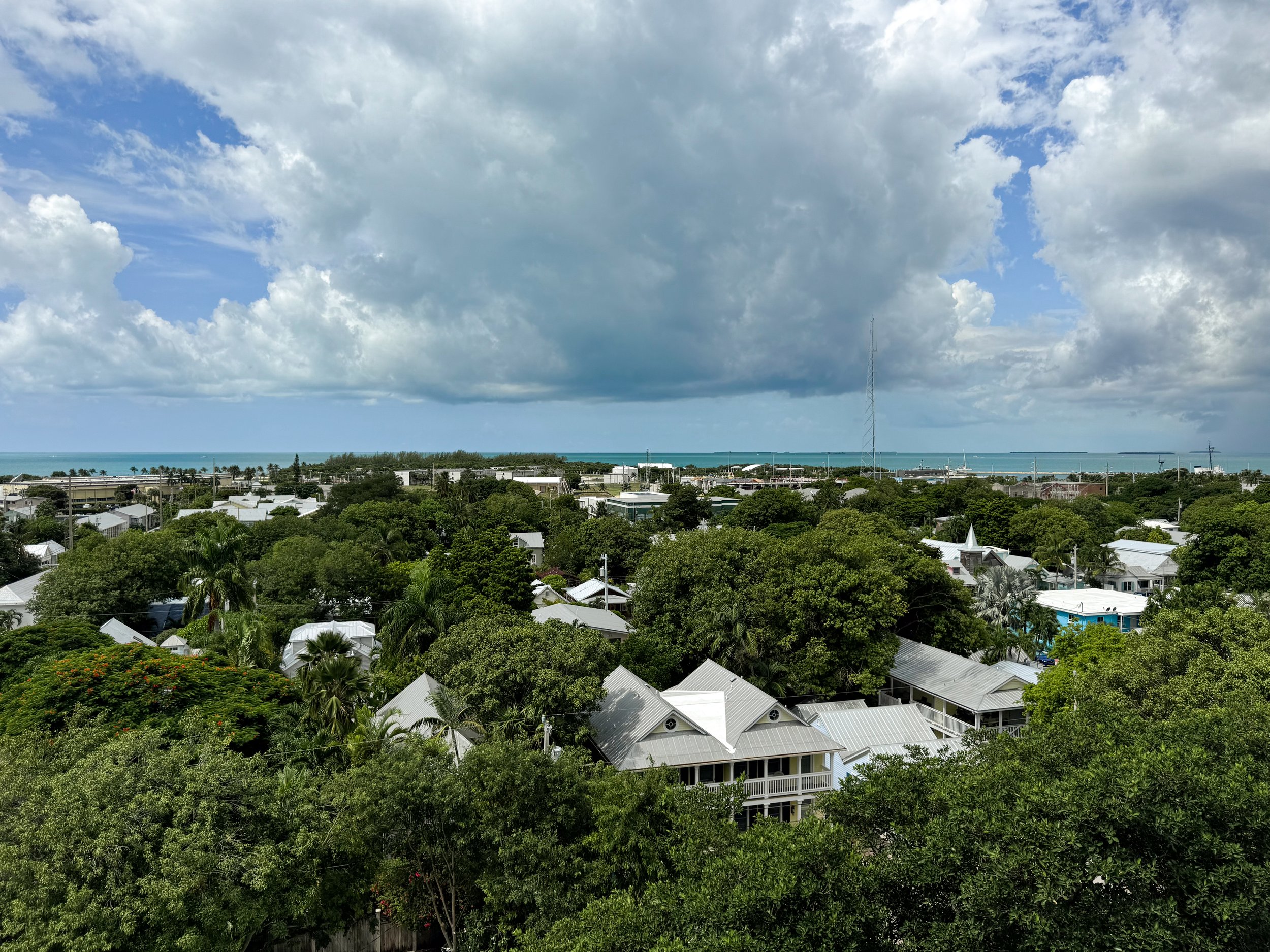
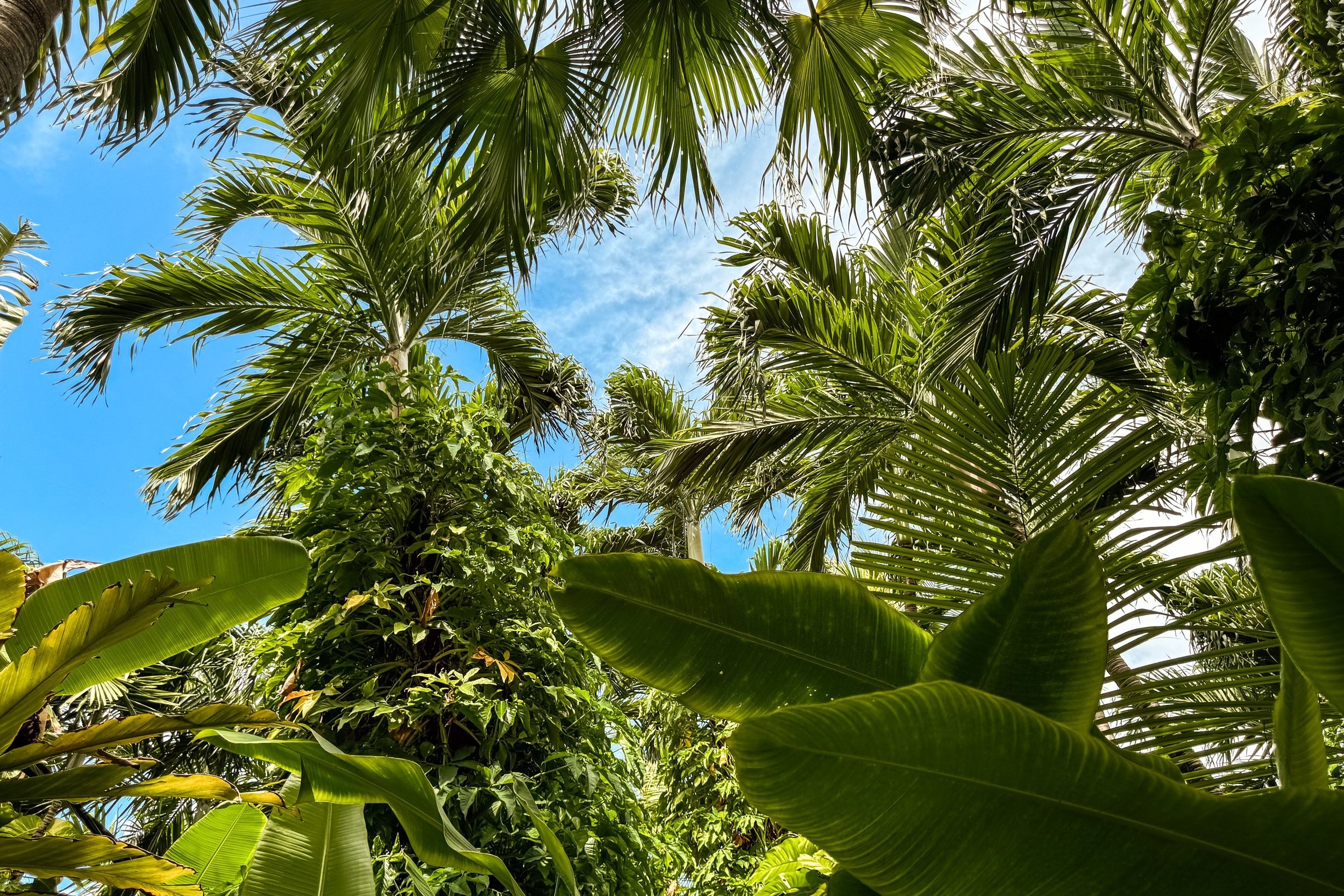
The Hemingway Museum. The former residence of American writer Ernest Hemingway. Tour his home and writing studio where he wrote many of his iconic novels and short stories. Walk through the grounds lush gardens and pet Hemingway’s cats.
Key West Lighthouse. A short white lighthouse with a spiral stair case leading to the crown with panoramic views of the key. The light house keeper’s house is a small museum dedicated the history of Key West.
Fort Zachary Taylor Beach. A park with a coral beach, short nature trails and a civil war era fort. Come here to swim and sunbathe, walk the nature trails and explore the cannon lined red brick and black cement fortress. The beach has a snack & beverage hut renting umbrellas & lounges. Wear beach shoes to avoid the jagged coral lining the beach. Along the shore is a shaded park with picnic tables and grills.
Higgs Beach. A small but sandy beach between two piers for snorkeling, swimming and swimming. I came here several years ago on a previous trip to Key West.
Mallory Square. No night in Key West would be complete without joining hundreds of people and watching the sunset from Mallory Square during the daily sunset festival. Arrive early with a drink in hand as the day ends and the night begins.
Truman Waterfront Farmers Market. A Thursday afternoon market with vendors selling boozy popsicles, empanadas, samosas, honey, breads, cheeses, vegetables and tropical fruits like dragon fruit, pineapple, papaya, star fruit, lychee & star fruit.
Where to Eat and Drink
Key West is where “it’s 5 o’clock somewhere” and “island time” meet. There are many restaurants with laid back vibes and bars serving tropical cocktails.
Tiki Bar. A cocktail bar with classic tiki drinks like the Mai Tai, Jungle Bird, Zombie and Hurricane. There is live music nightly, a shop selling tiki mugs and hidden tiki bar in the back.
Eaton Street Seafood Market. A seafood market and restaurant serving the day’s fresh catch. We came for conch ceviche, stone crab claws and beers from Islamorada Brewing.
Schooner Wharf Bar. Come here for the shrimp! They source their shrimp from Key West’s last shrimping boat docked in front of the restaurant. We devoured the coconut shrimp and drunken shrimp, a peel and eat shrimp boiled in beer and spices!
Speakeasy Inn and Rum Bar. An inn with several rooms and a rum bar with one of the largest collections of rum in the US. Sip on rum neat the at bar chatting with locals and other vacationers or sit on their porch overlooking Duval Street while enjoying a Painkiller.
Hemingway Social Club. A cocktail bar attached to the Hemingway Rum Distillery. Come here for cocktails like a Hemingway Daiquiri made with their house run while listening to the live music.
Cafelito. A cafe with a walk up window selling iced Cuban coffees and Cuban pastries like the guava and cheese turn over.
Sally Frog’s. A bar near Malloy Square with cocktails and local beers like the Crazy Lady Honey Blonde Ale brewed at The Waterfront Brewery.
Cuban Coffee Queen. A small coffee shack by the harbor selling cups of Cuban coffee.
Cocomelon. A juice bar and cafe selling ice cold fresh coconuts. Come here to sip coconut water from the tropical fruit while relaxing in their patio.
Kermit’s Key Lime Shop. Come for the key lime pie! They sell it by the slice, whole and frozen on a stick.
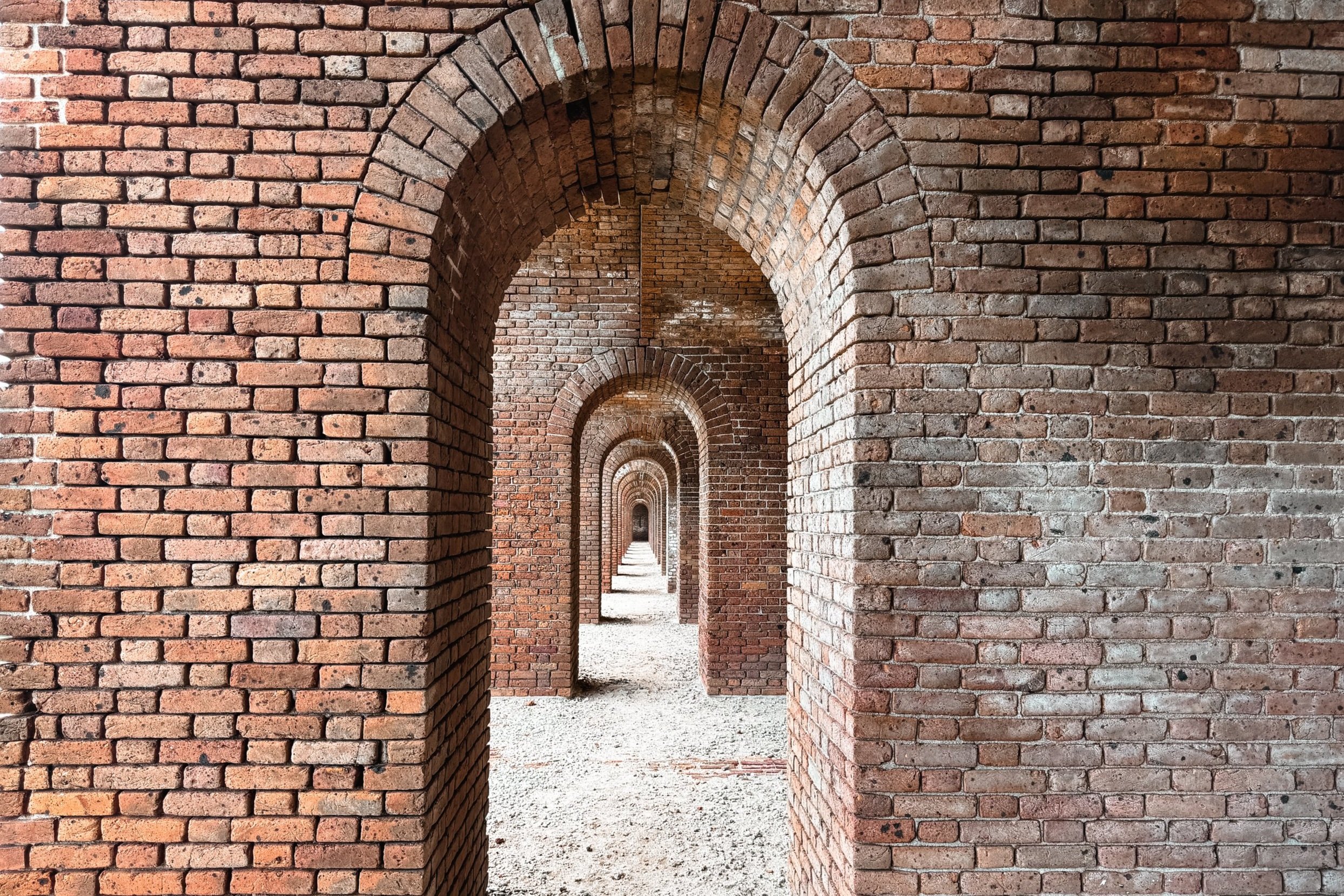
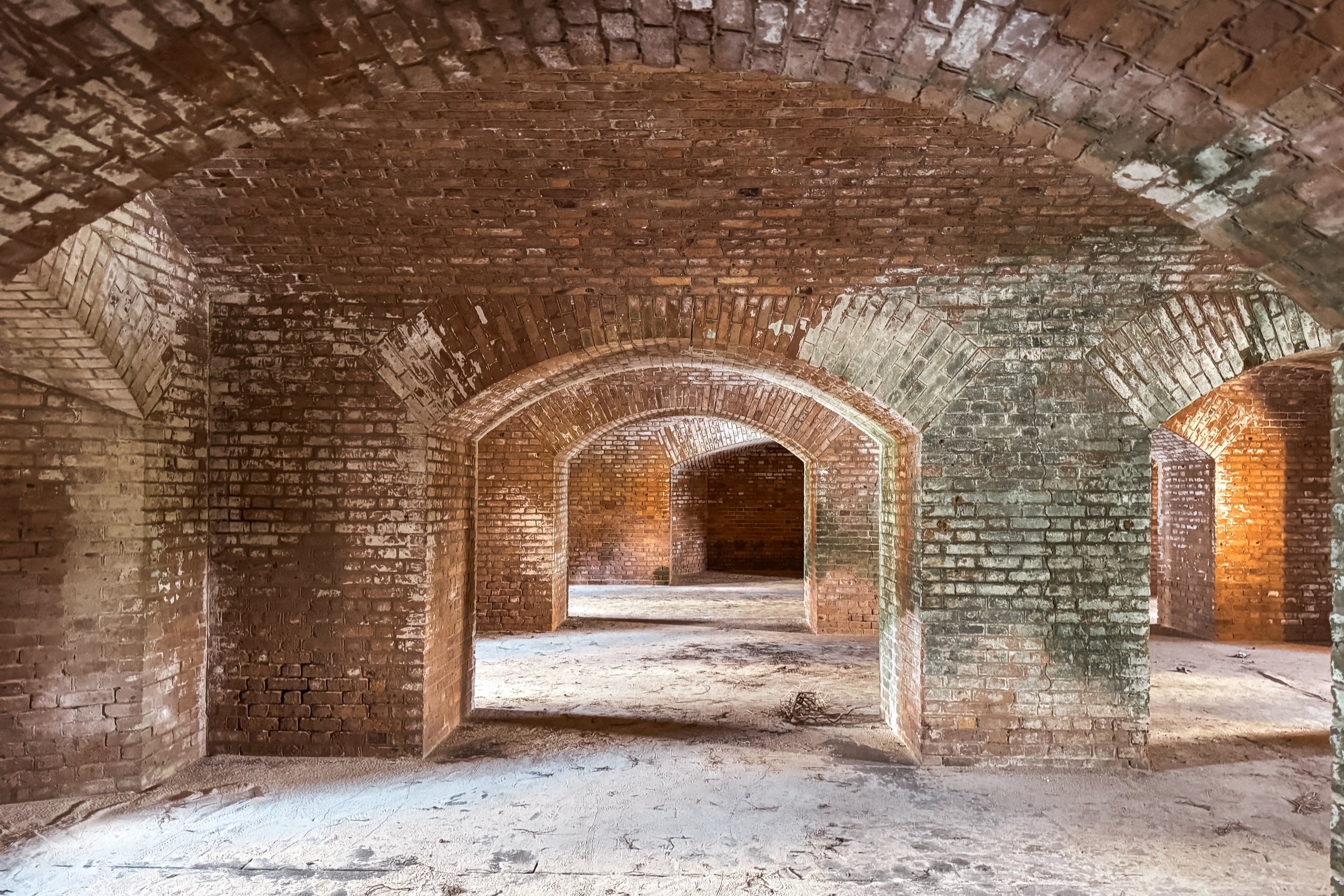
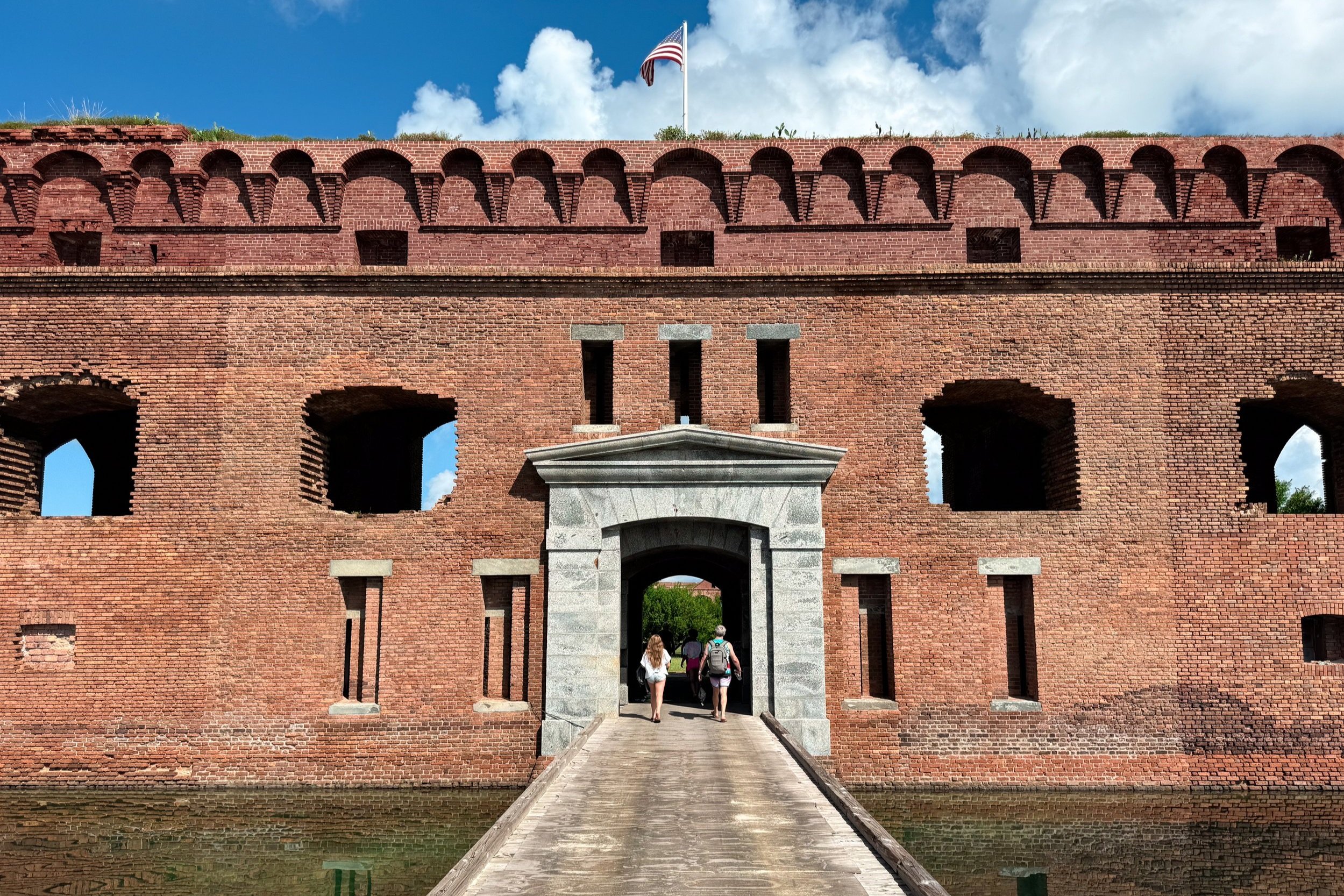
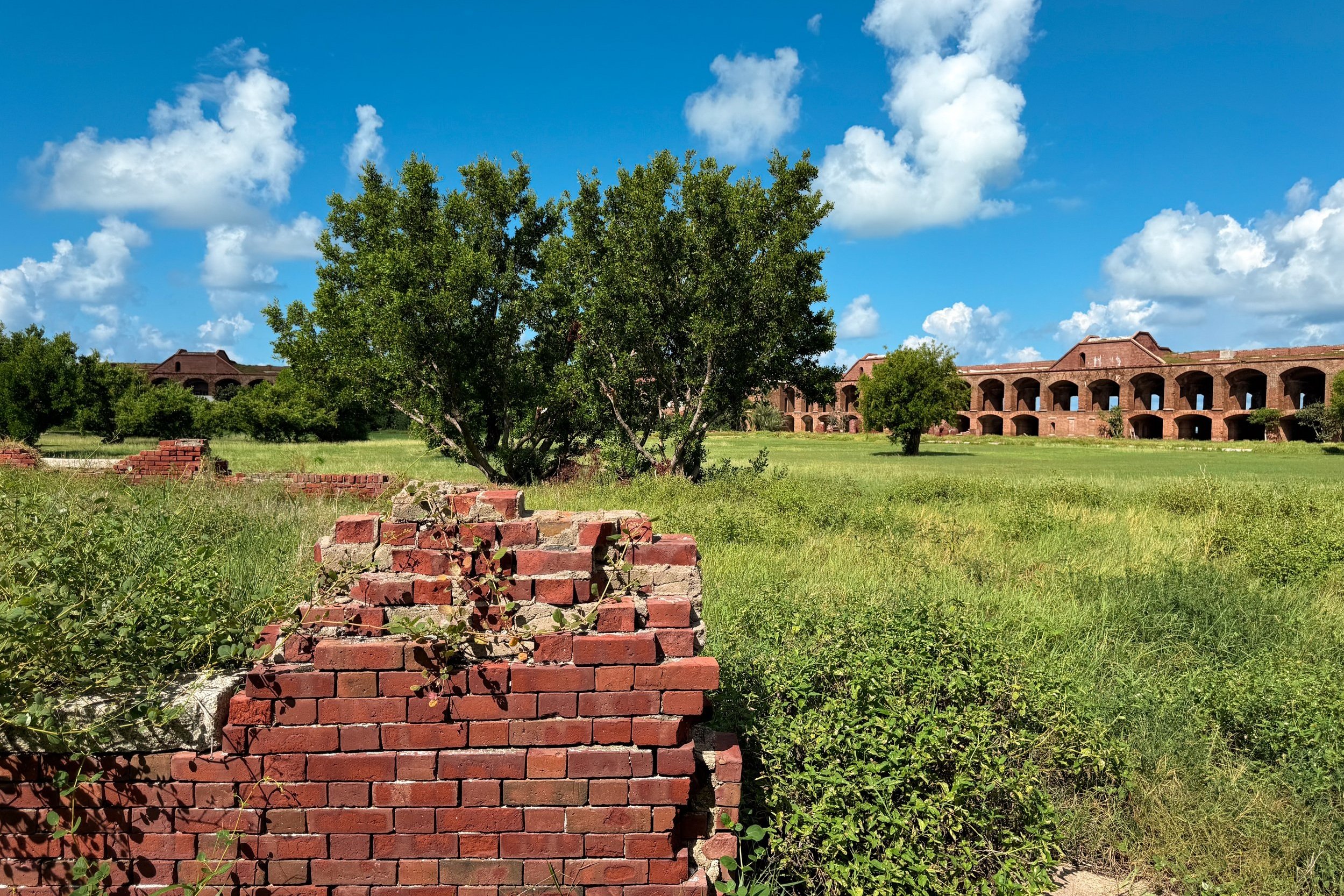
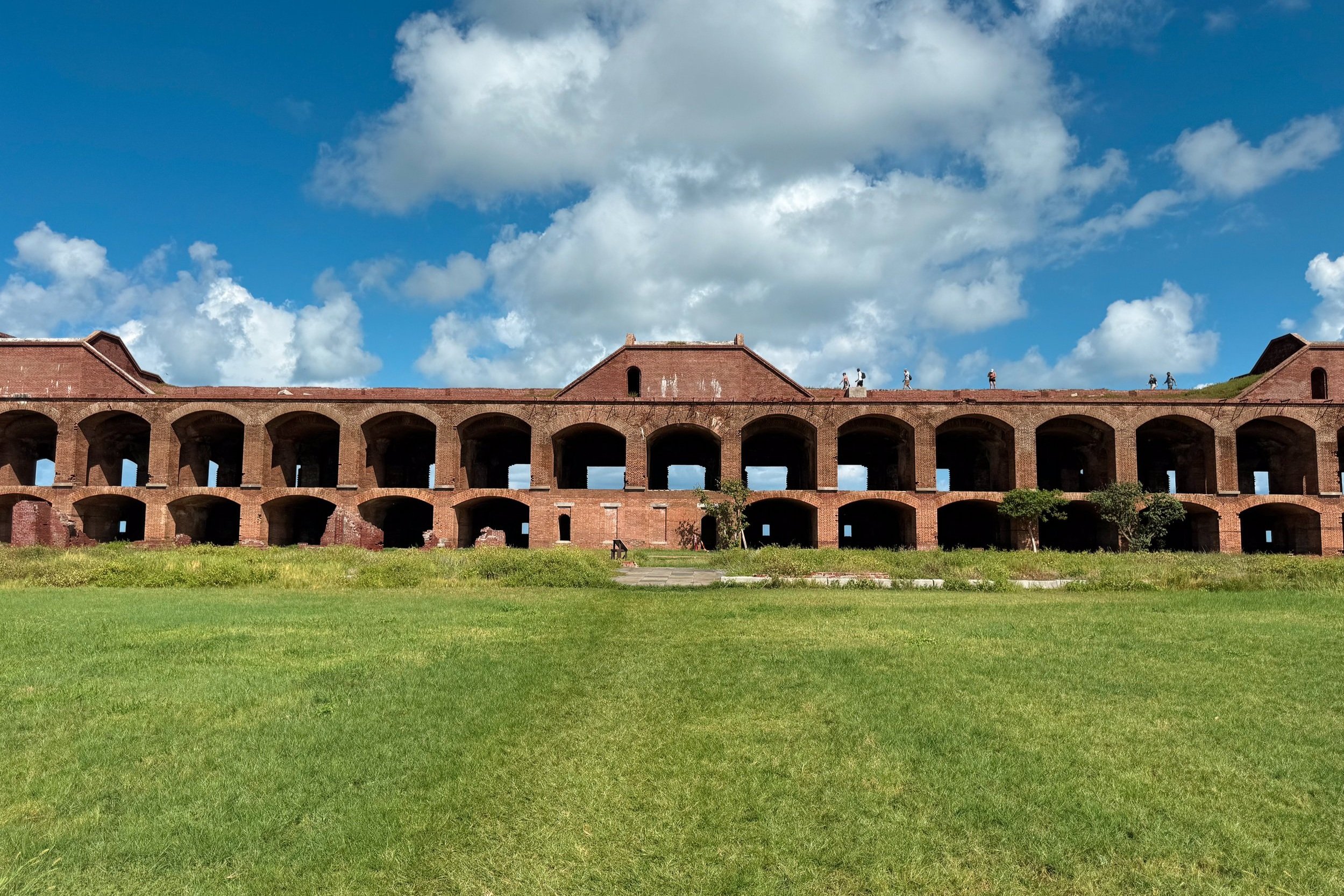
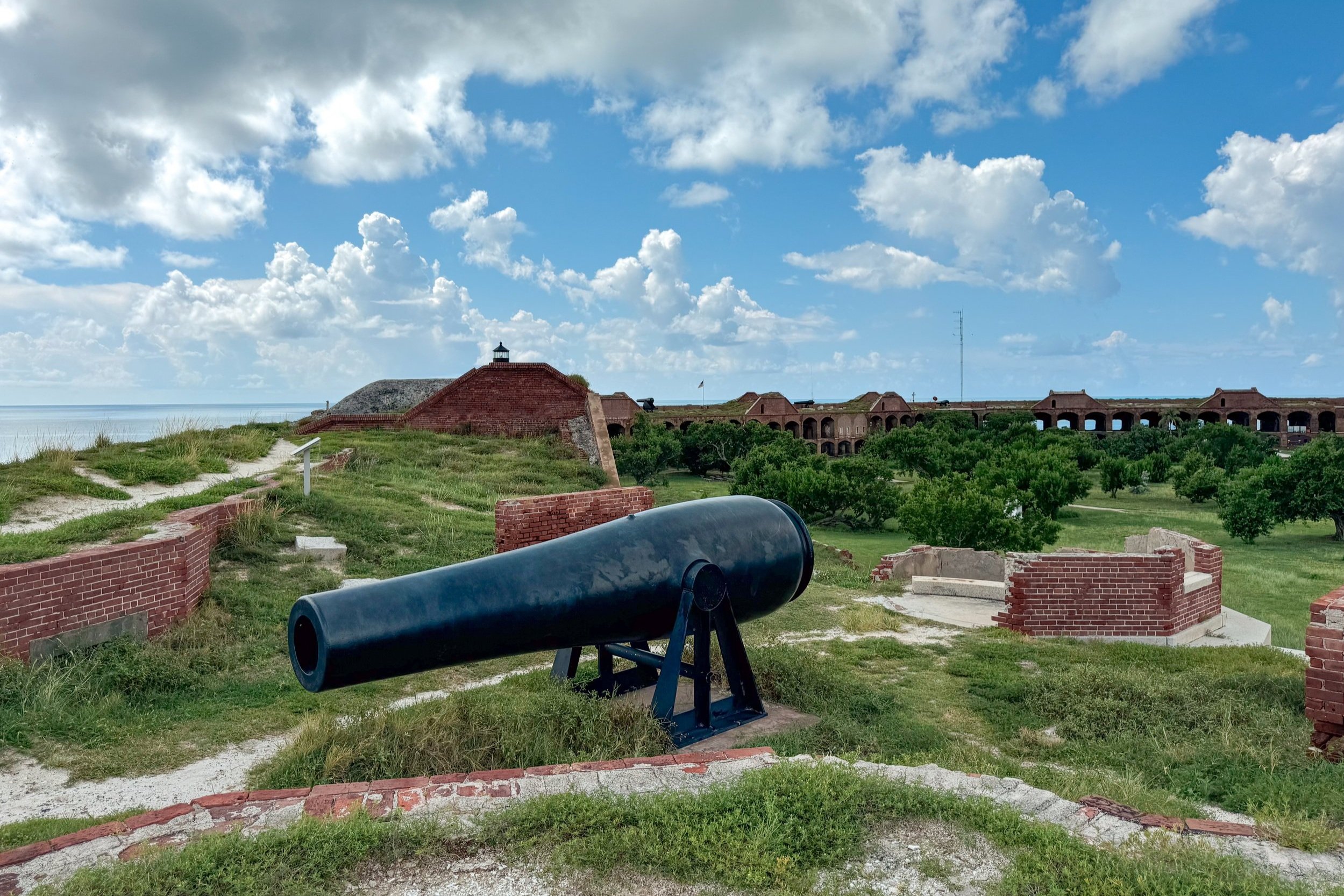
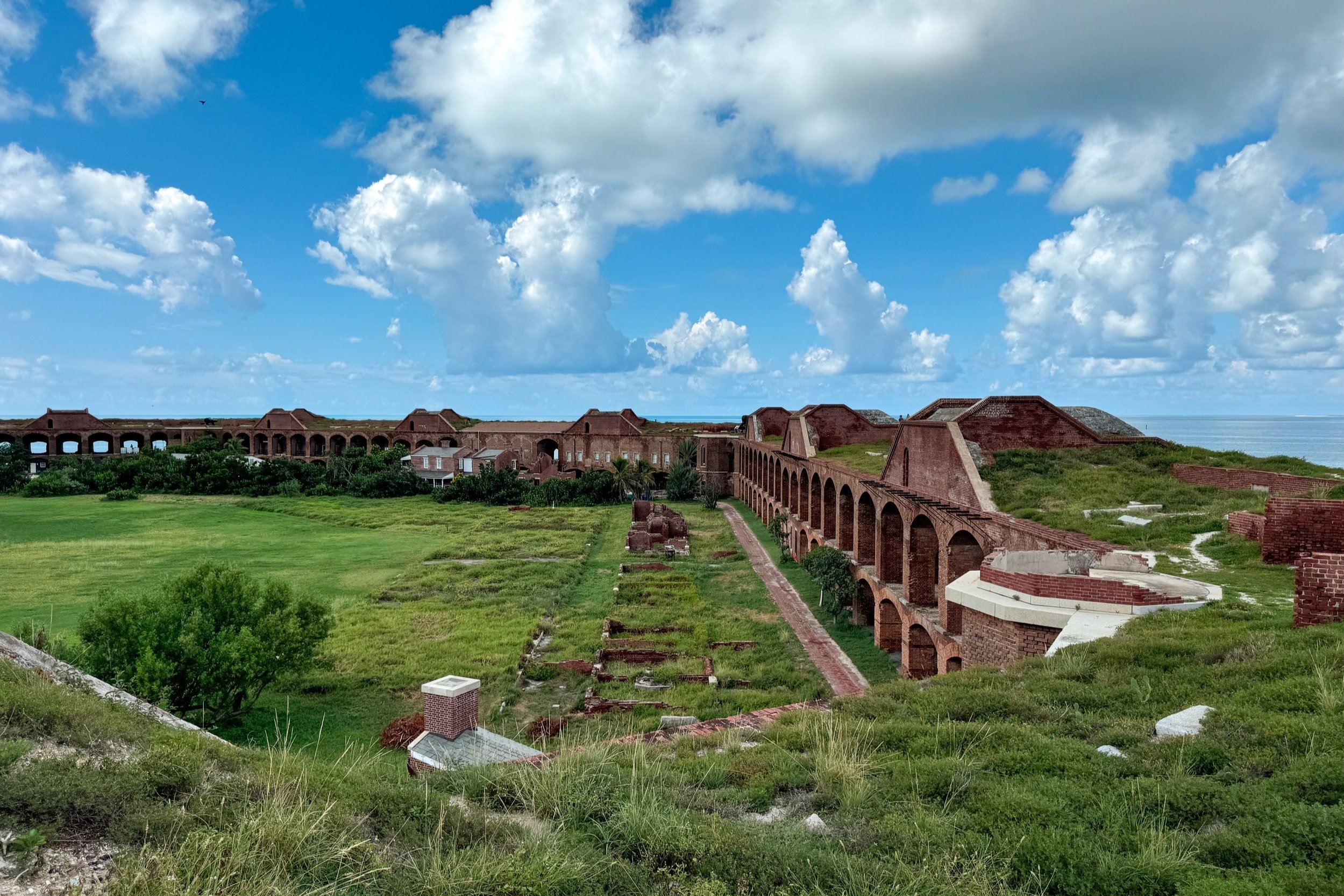
Dry Tortugas National Park
60 miles from Key West are the Dry Tortugas, a national park with several low lying islands, protected marine and avian reserves, a massive civil war fortress, a light house and a campground.
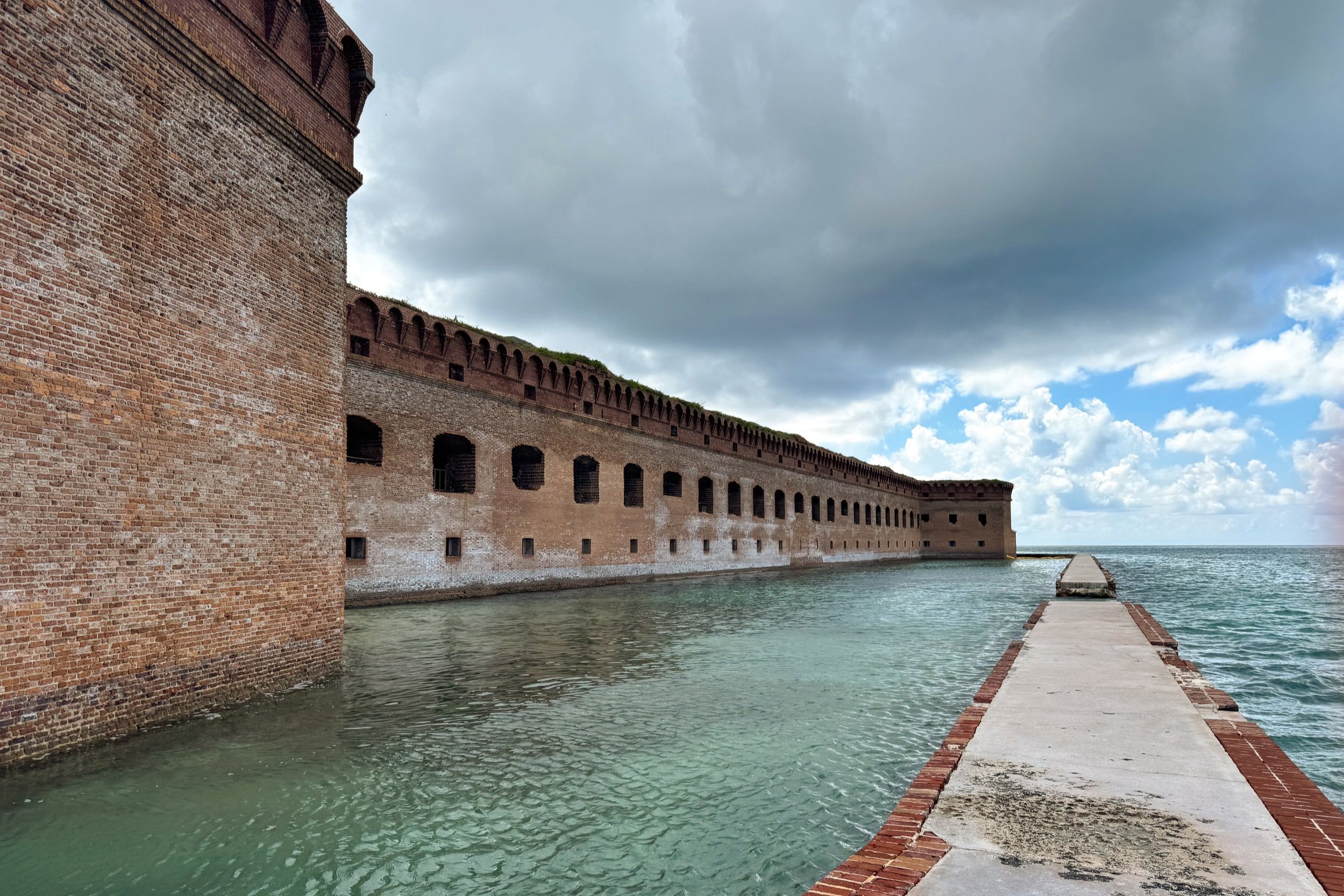
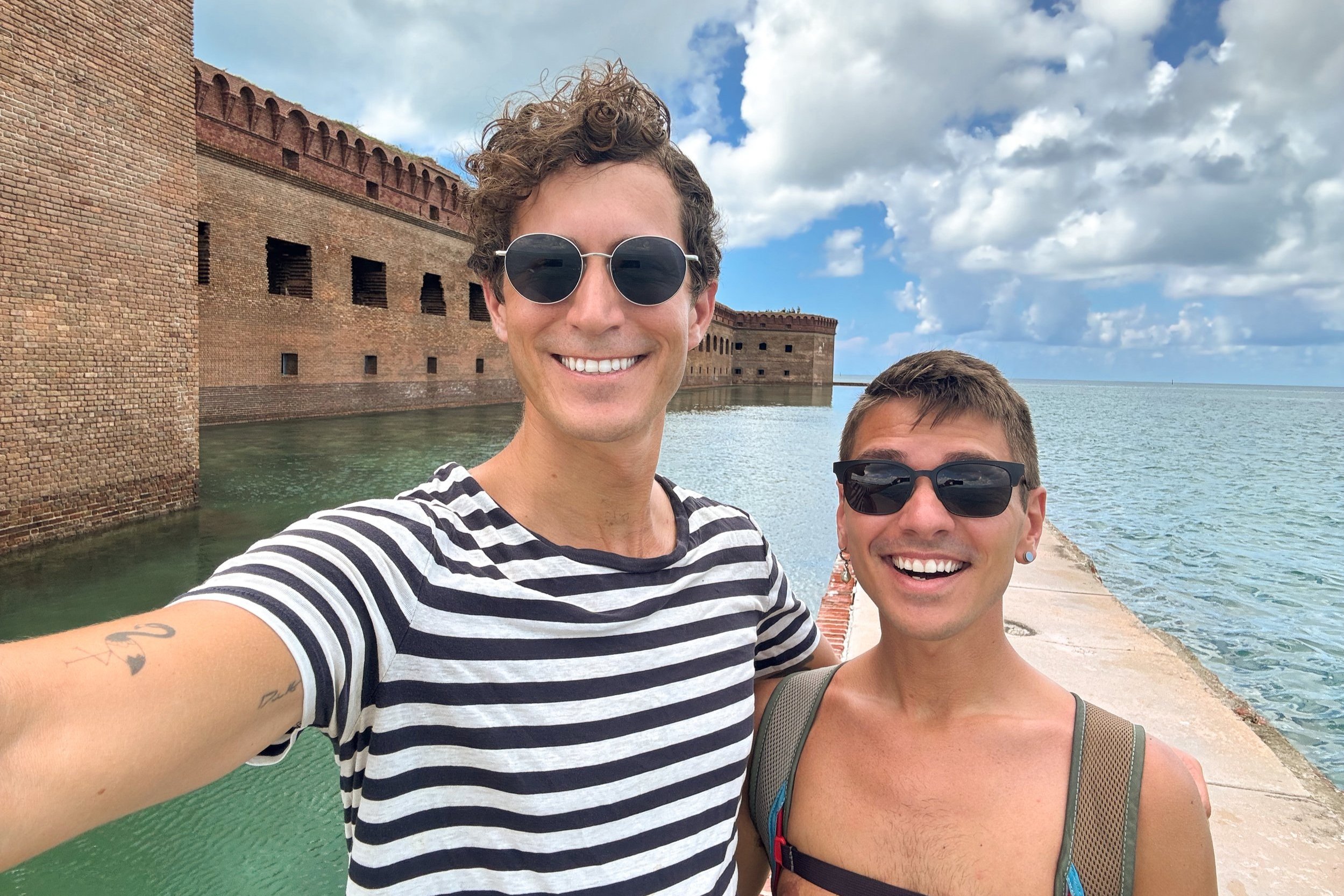
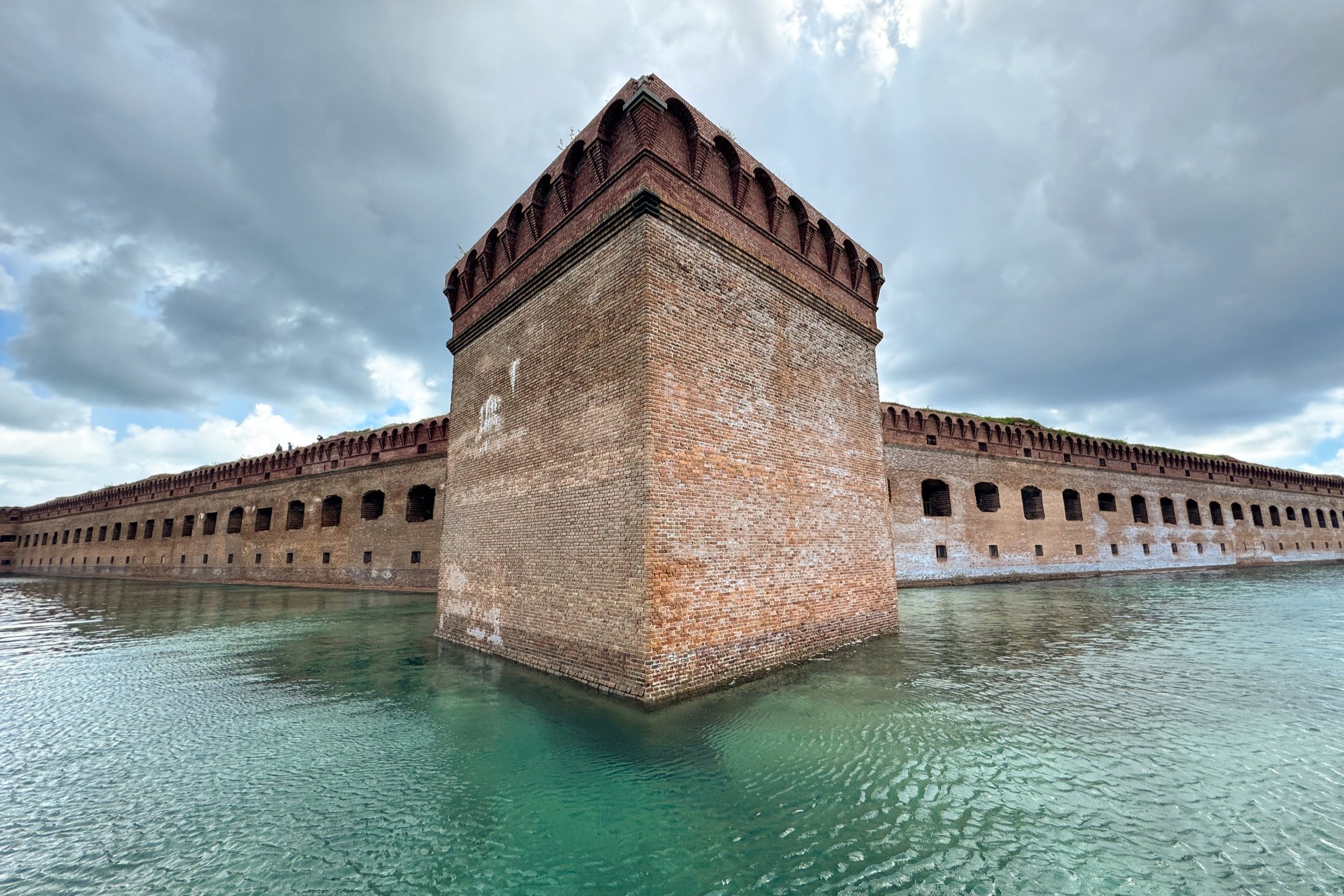
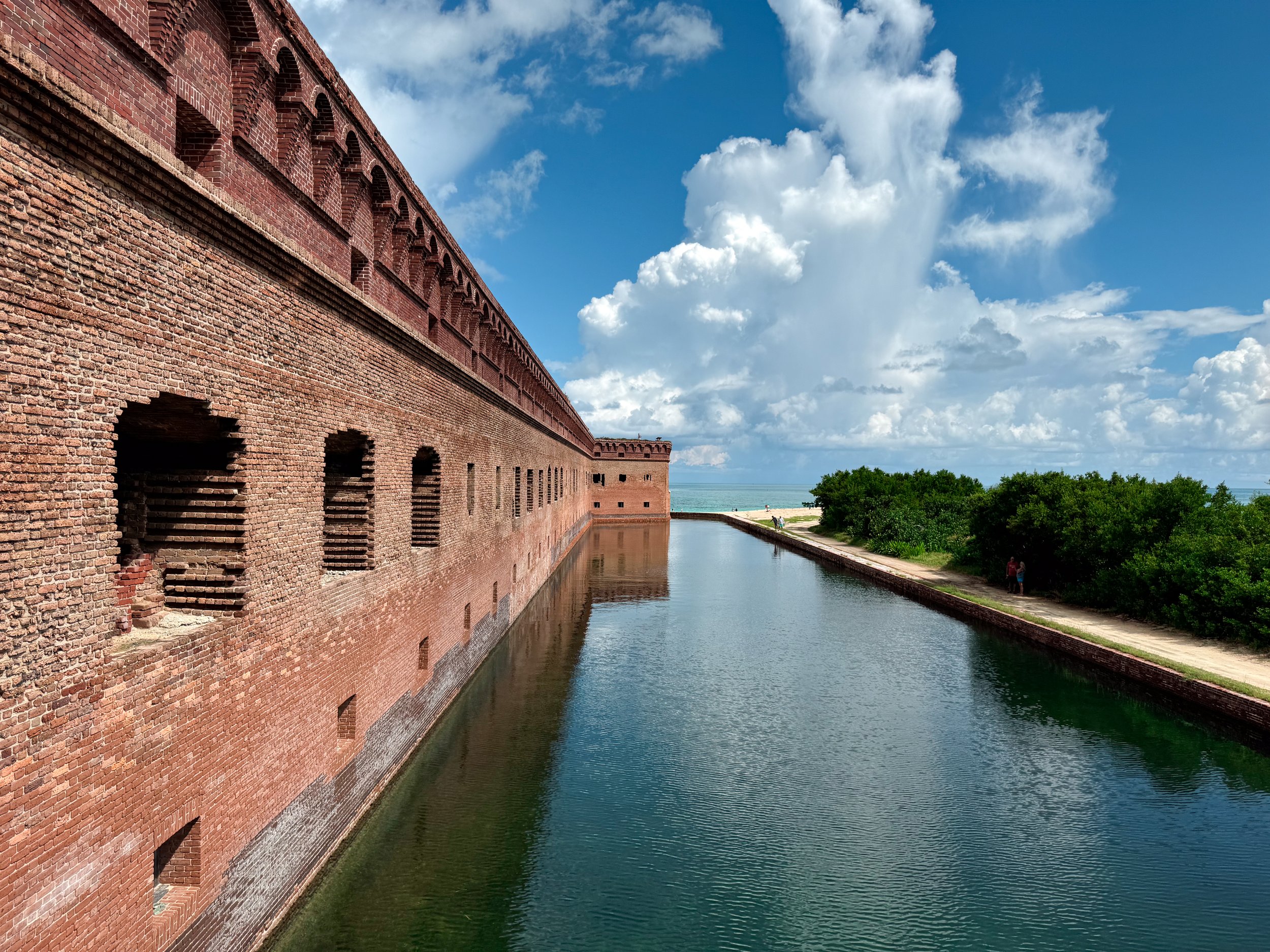
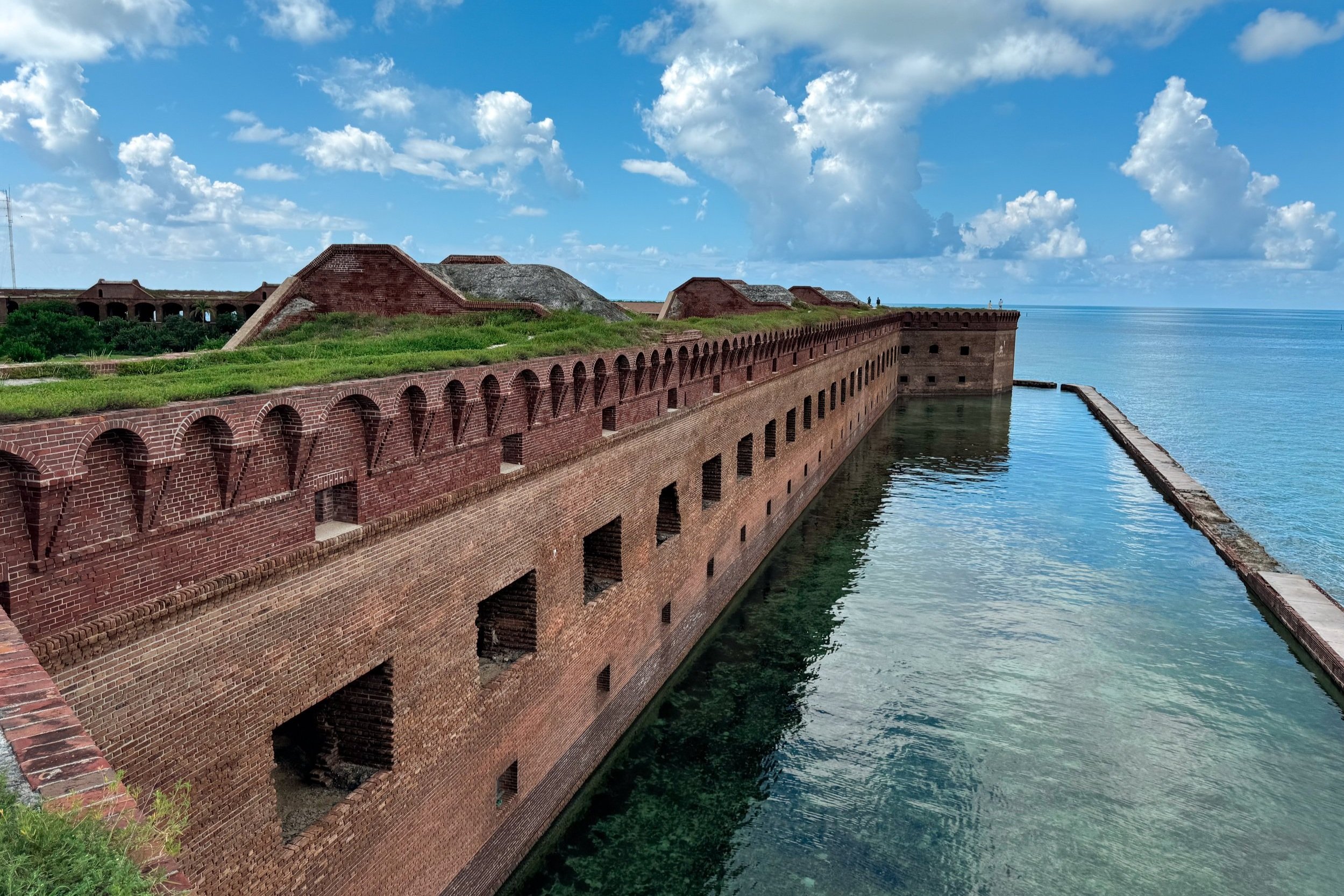
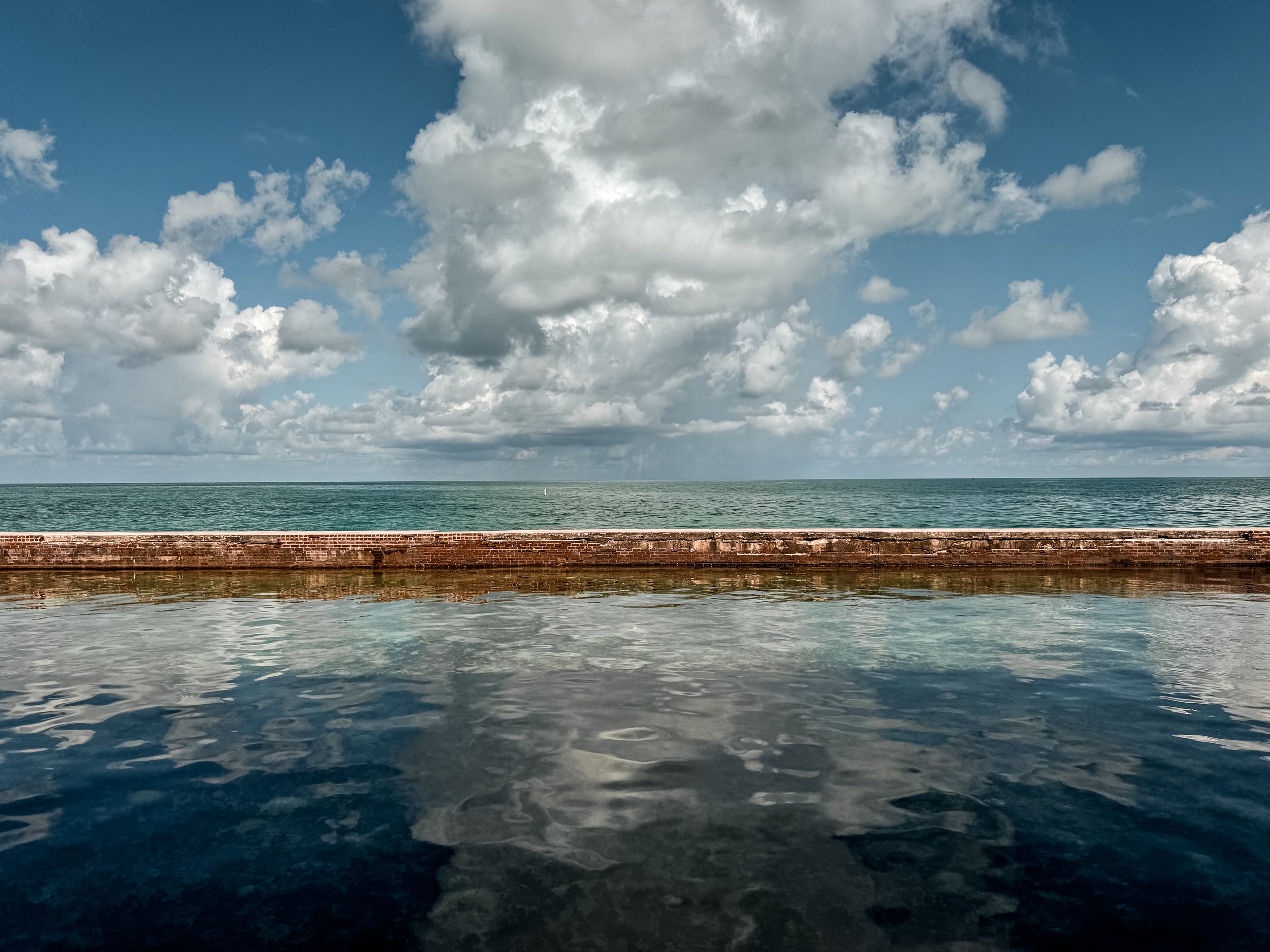
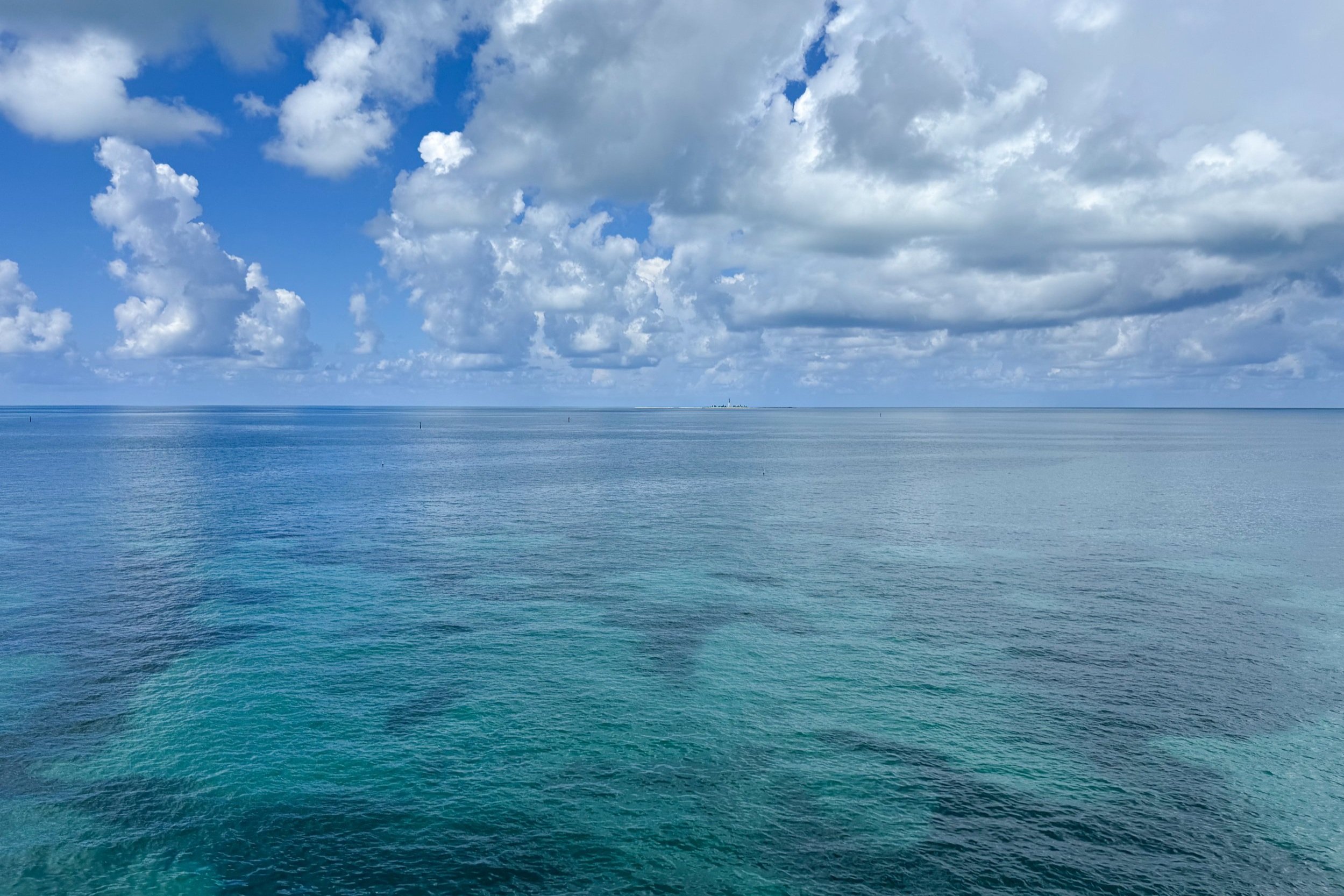
Fort Jefferson. An hexagonal three level civil war fort rising from the sea. The historic red brick fort is surrounded by a mote with a large interior court yard and the ruins of many military structures.
We spent time exploring the 3 levels of the fort. The ground level houses many of the forts supportive facilities like a bakery, cistern and the barracks. The second level was dedicated to the prisoner’s cells and the hospital. The third level is overgrown with trails leading along the wall past cannons and to the fort’s lighthouse.
Outside of the fort is a mote and wall designed to protect the main fort from the sea. Walk along it to admire its historic outer walls, look out towards the sea and spot tropical fish.
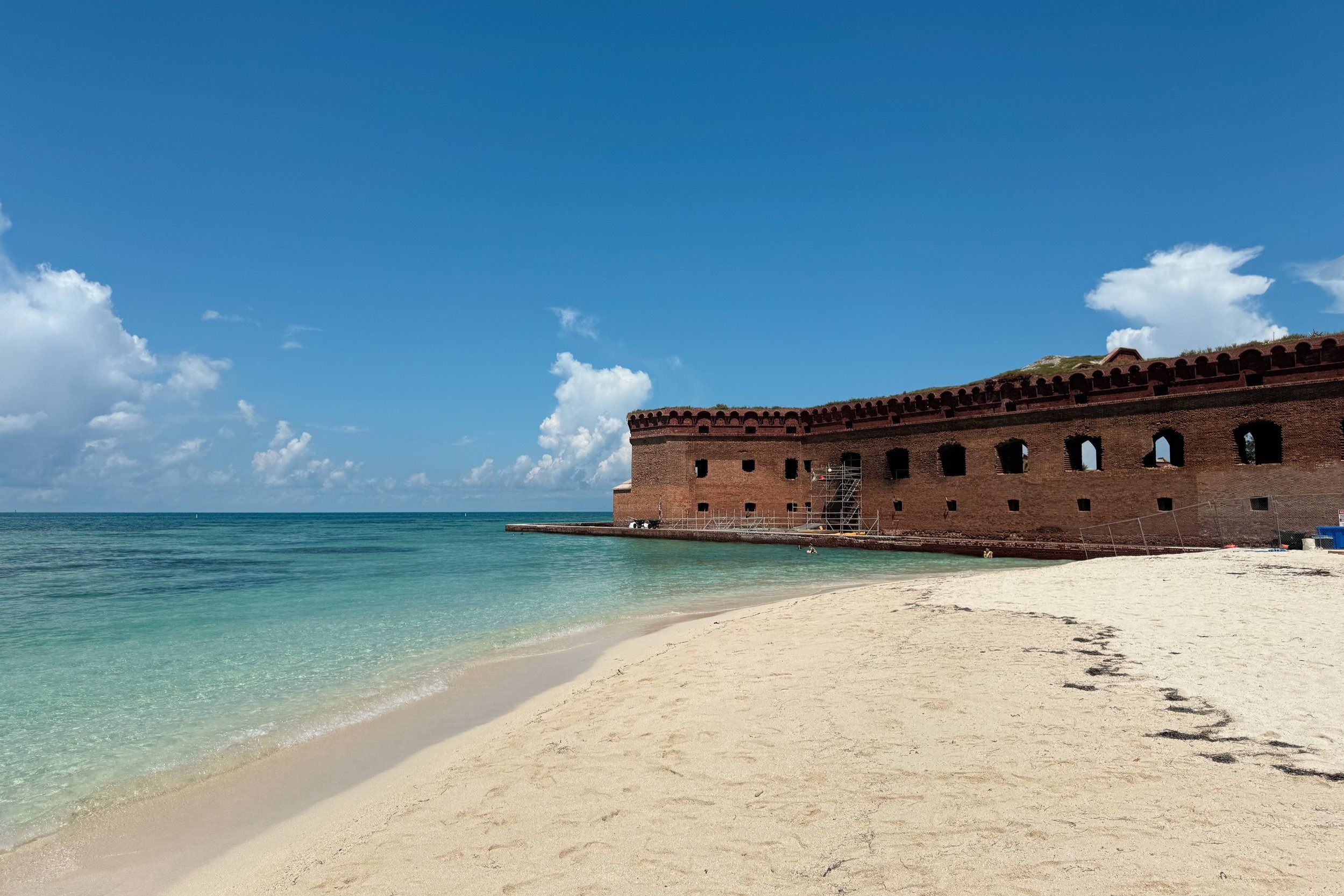
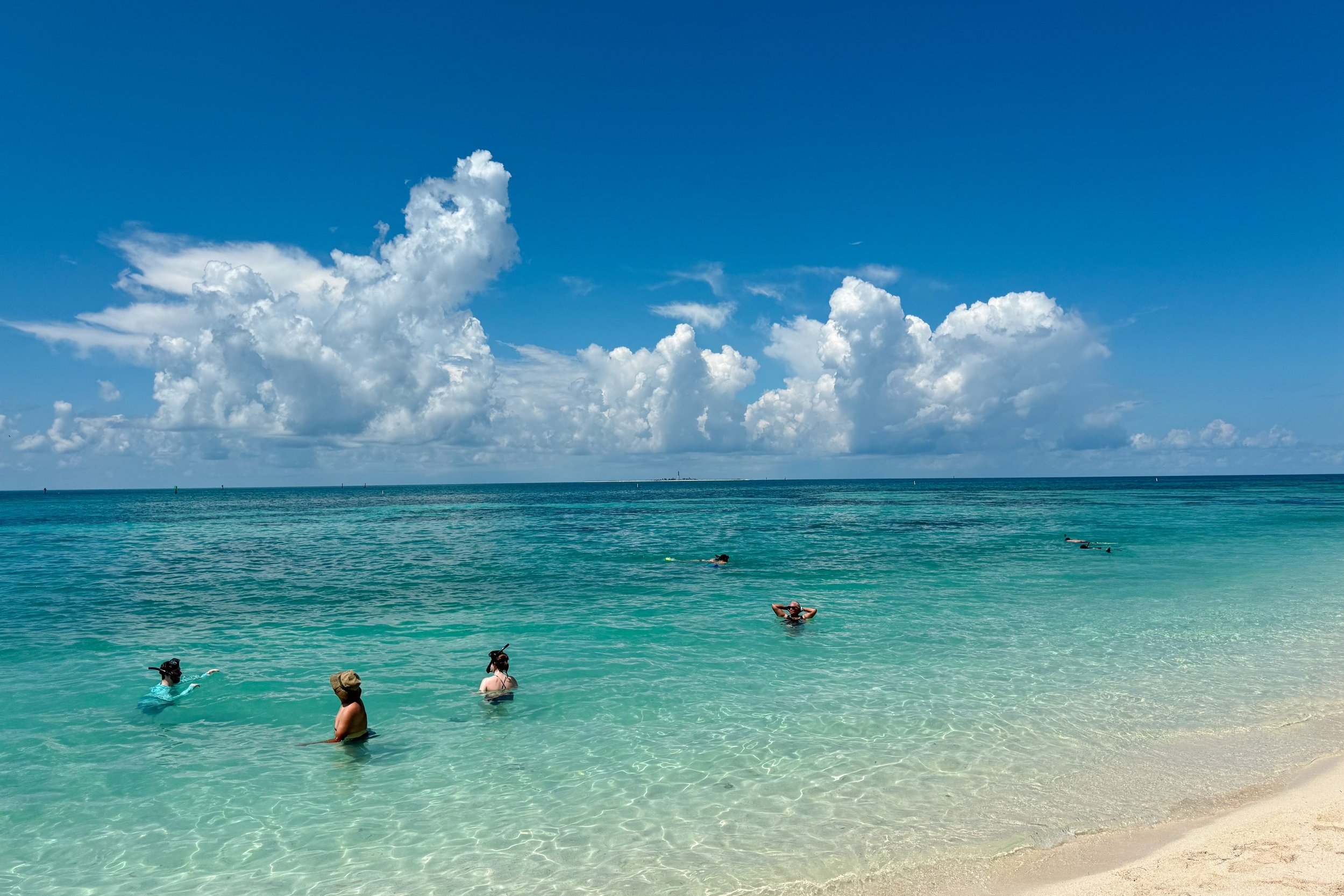
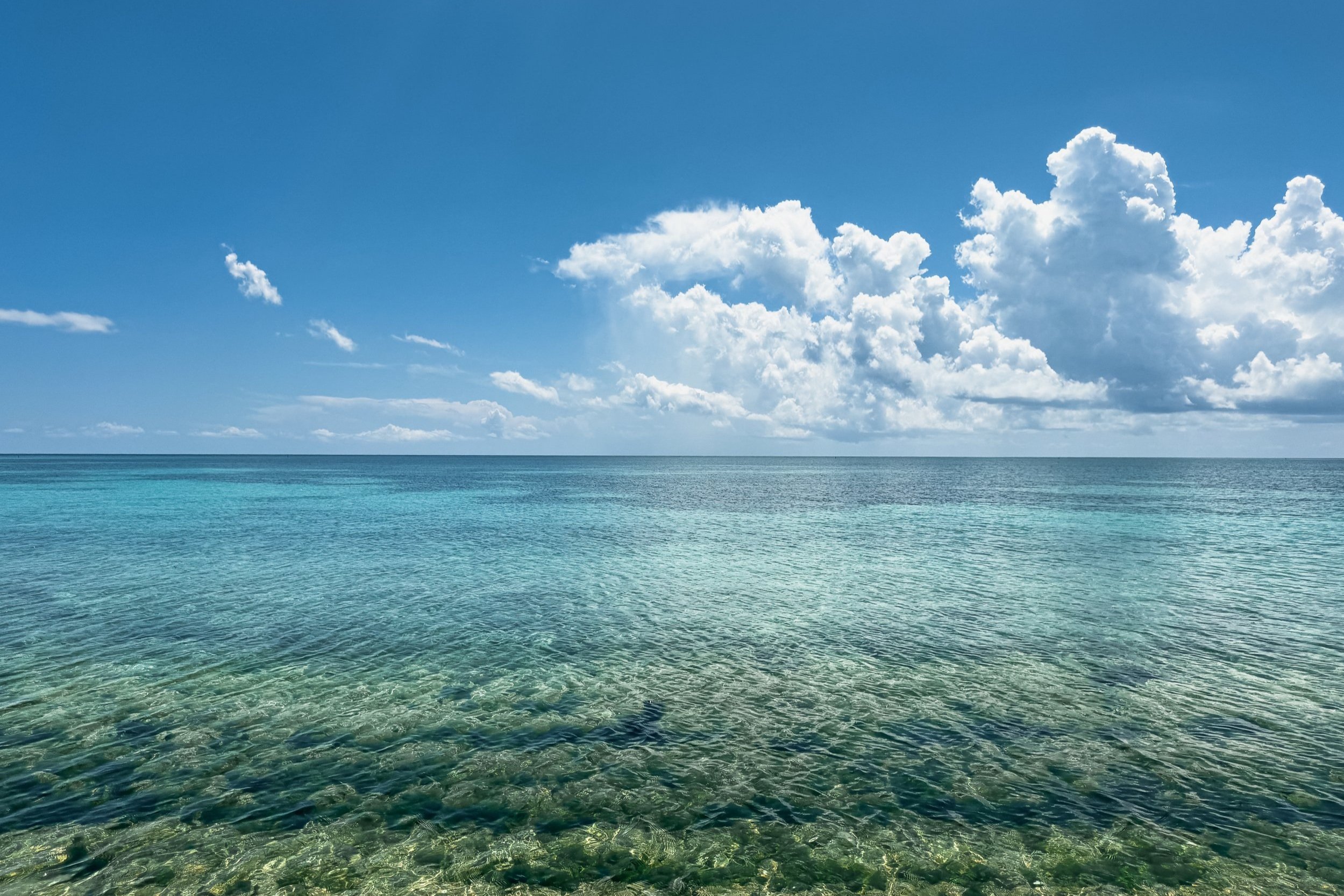
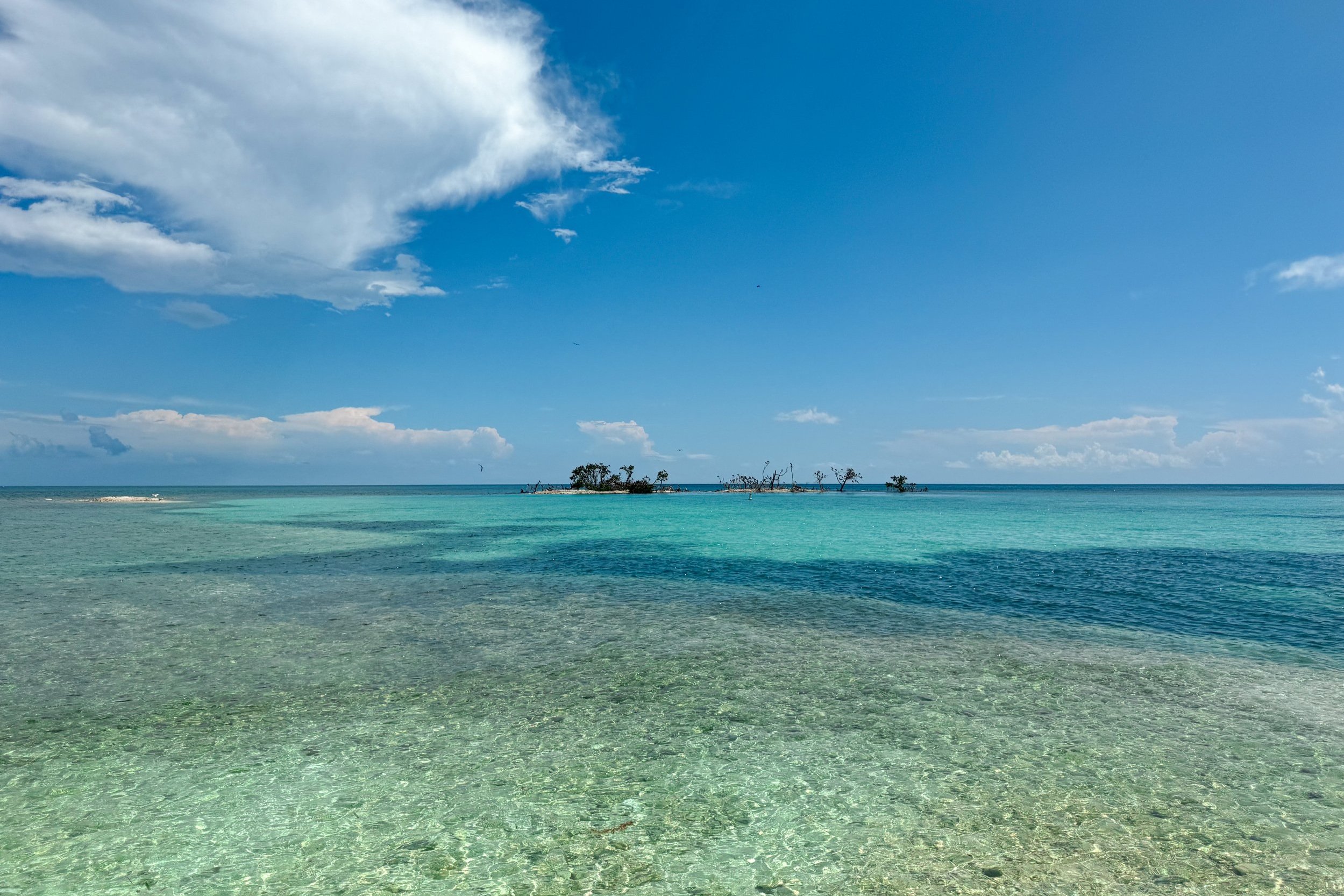
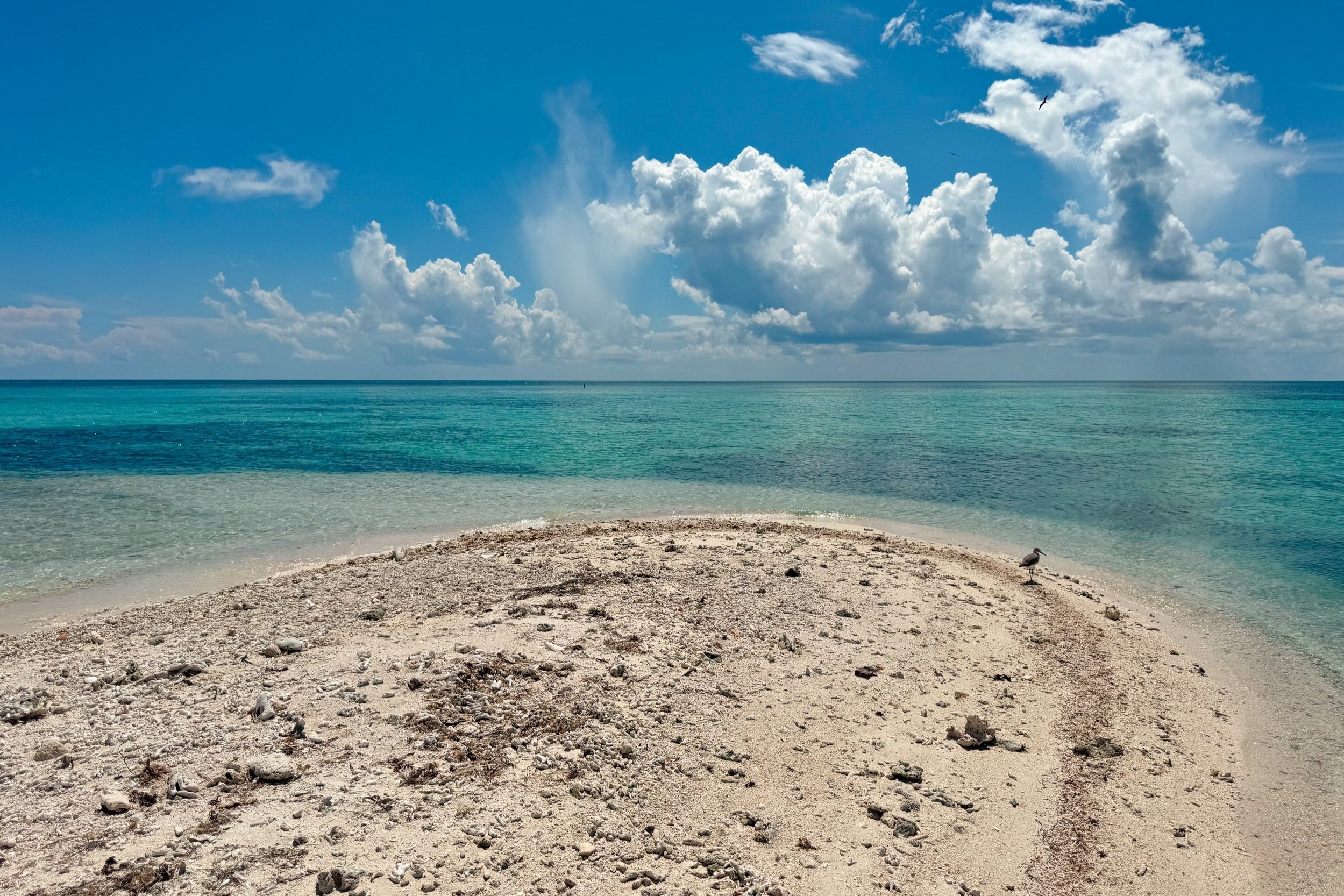
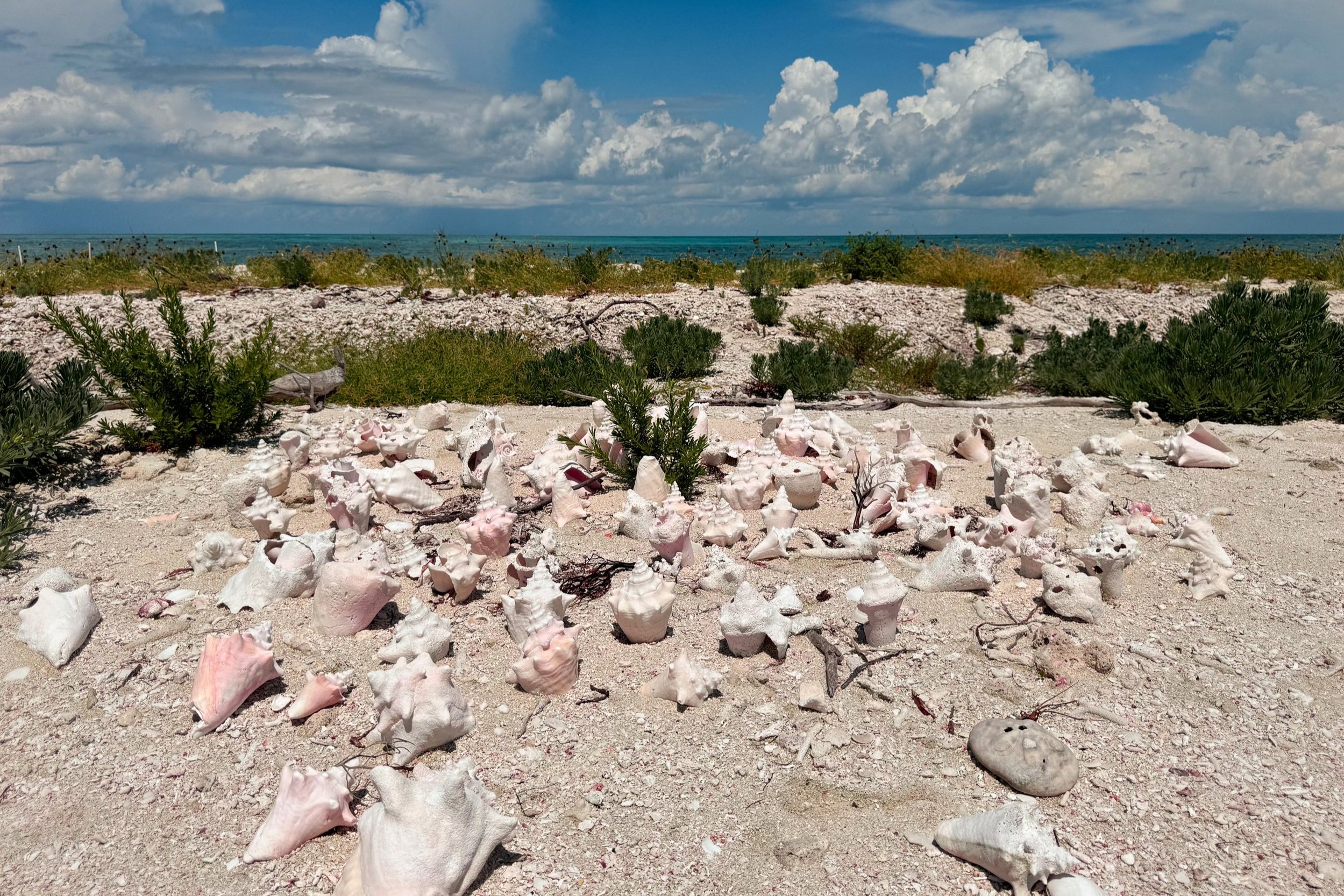

Beaches. Outside of the fort, there are two coral beaches to swim at with warm and shallow water. The South Beach was the calmest and clearest for swimming and snorkeling. There is some sea grass, fragments of broken coral throughout the bay. The North Beach was a little choppier with less visibility for snorkeling.
Snorkeling. Along the wall of the South Beach, we spotted smaller tropical fish, some living coral, sea anemones, pink jelly fish and the carcus of a giant spiny lobsters.
Land Bridge. Walk the tidal land bridge towards the avian reserve of Long Key. The shallow stretch of sand it covered in conch shells, sand dollars and broken coral. Come here to spot pelicans and sand pipers.
Loggerhead Lighthouse. A black and white lighthouse visible on the horizon from Fort Jefferson on Loggerhead Key, nearly two miles away.
Camping. There’s something special about camping on a desert island in the middle of the sea! I camped here overnight on my last trip to Key West and the Dry Tortugas between some of the islands only few trees and bushes.
Yankee Freedom. The main company ferrying between Key West and the Dry Tortugas. The ticket includes transit, a tour of the fort, snorkel equipment, breakfast and lunch, cocktails for purchase.
Getting Here. It takes 2 hours 30min to reach the Dry Tortugas from Key West with 4 hours on the island. Book in August and September for $50 off an order of 2 tickets. Book here!
Where to Stay
We stayed at the Speakeasy Inn & Rum Bar! The boutique inn on the south end of Duval Street has two floors of newly renovated rooms and is stumbling distance away from their rum bar. Our stay included free parking, a welcome cocktail and discounted drinks!
Getting Around
Key west is very walkable, especially along the mile long stretch of Duval Street. Even so, there are many rentals offering bikes, scooter and golf cart.
Bikes $10 / day
Scooters $35 / day
Golf carts $100 / day
The Conch Train. A multi car trolly that rides around the city passing most of the sights with a narrated guide.
Good to Know
Locals leave during the month of September to vacation elsewhere. As a result, some restaurants and bars are closed. However, as this is the slow season, many hotels offer deals making the island more affordable to visit.
For Next Time…
We loved our time visiting Key West! We hope to return for more rum cocktails, sunset views and the tropical atmosphere. Outside of Key West, we would love to spend a few nights exploring the other keys more.
New Orleans
New Orleans is a historic city with a lively, liberal and romantic atmosphere. We fell in love with NOLA so much so that it’s where we’re planning to get married in 2022
NOLA
New Orleans is a historic city with a lively, liberal and romantic atmosphere. We fell in love with NOLA so much so that it’s where we’re planning to get married in 2022. Between visiting venues and wedding planning, we spent time indulging in the city’s unique Cajun cuisine and Creole flavors, riding the street car down oak lined boulevards, walking through residential neighborhoods to look at the colorful cottages, listening to Jazz echo from the bars while drinking in the streets and learning more about the city’s past. Above all, New Orleans is a place to relax and celebrate, one of the many reason we can’t wait for our wedding day!
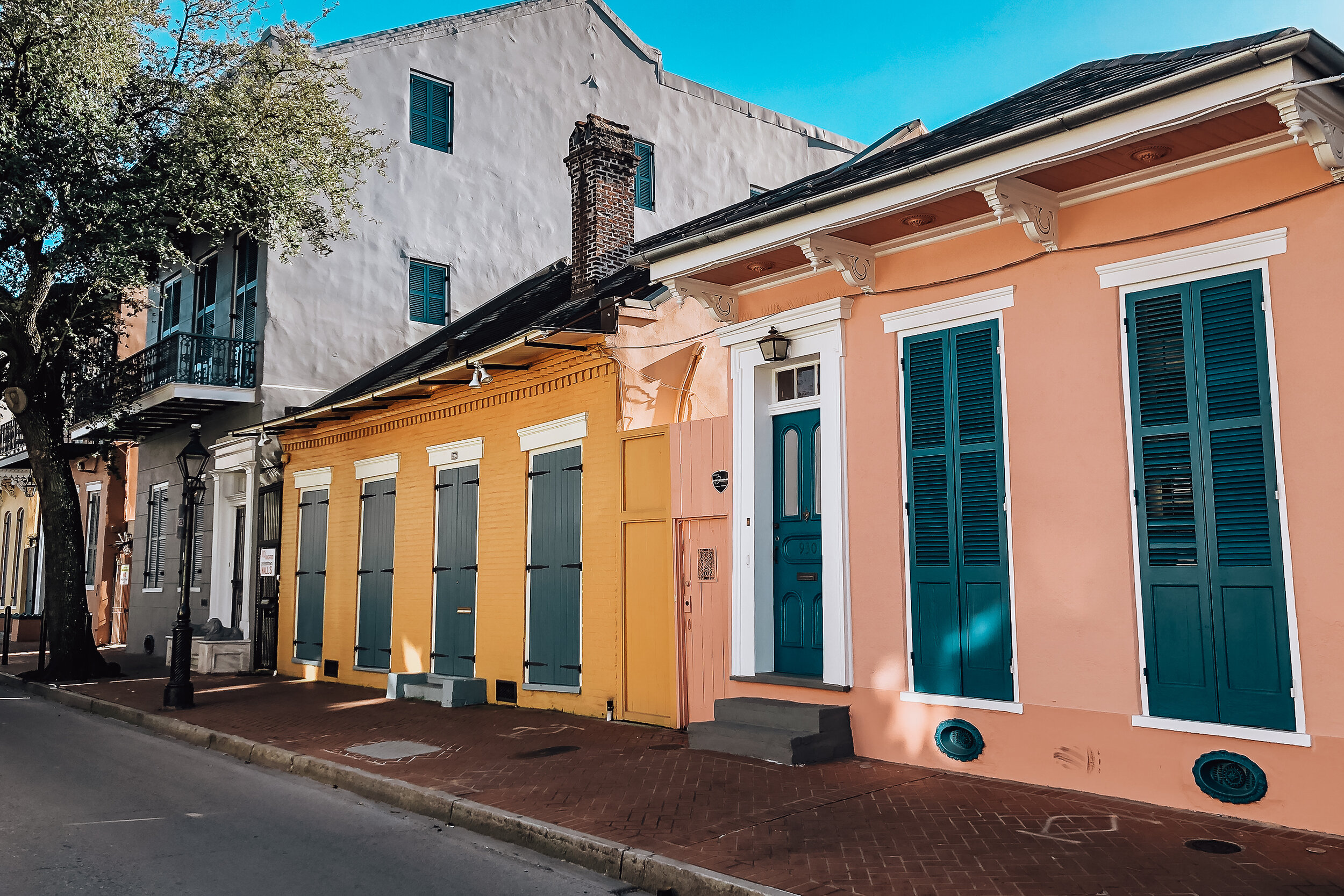
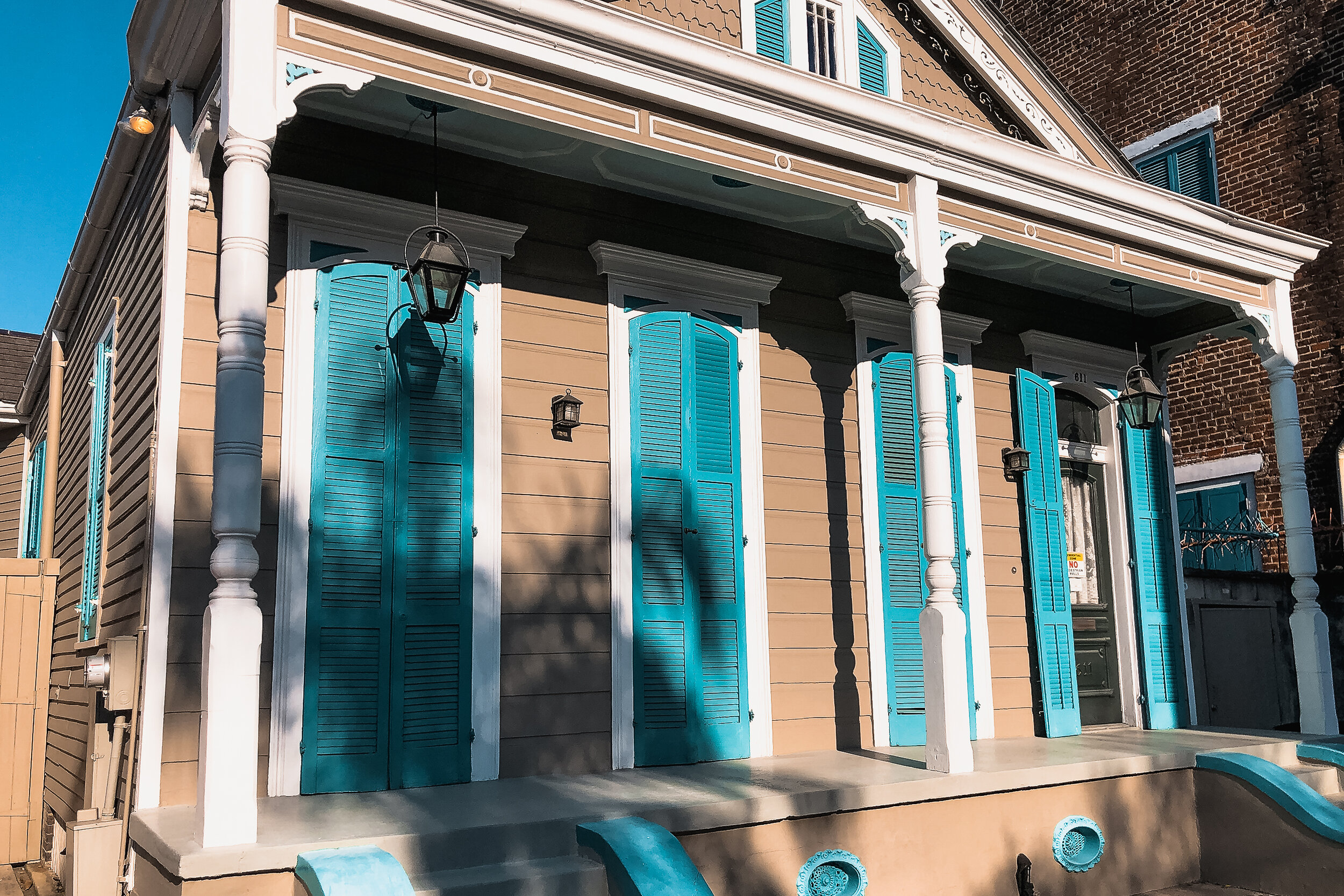
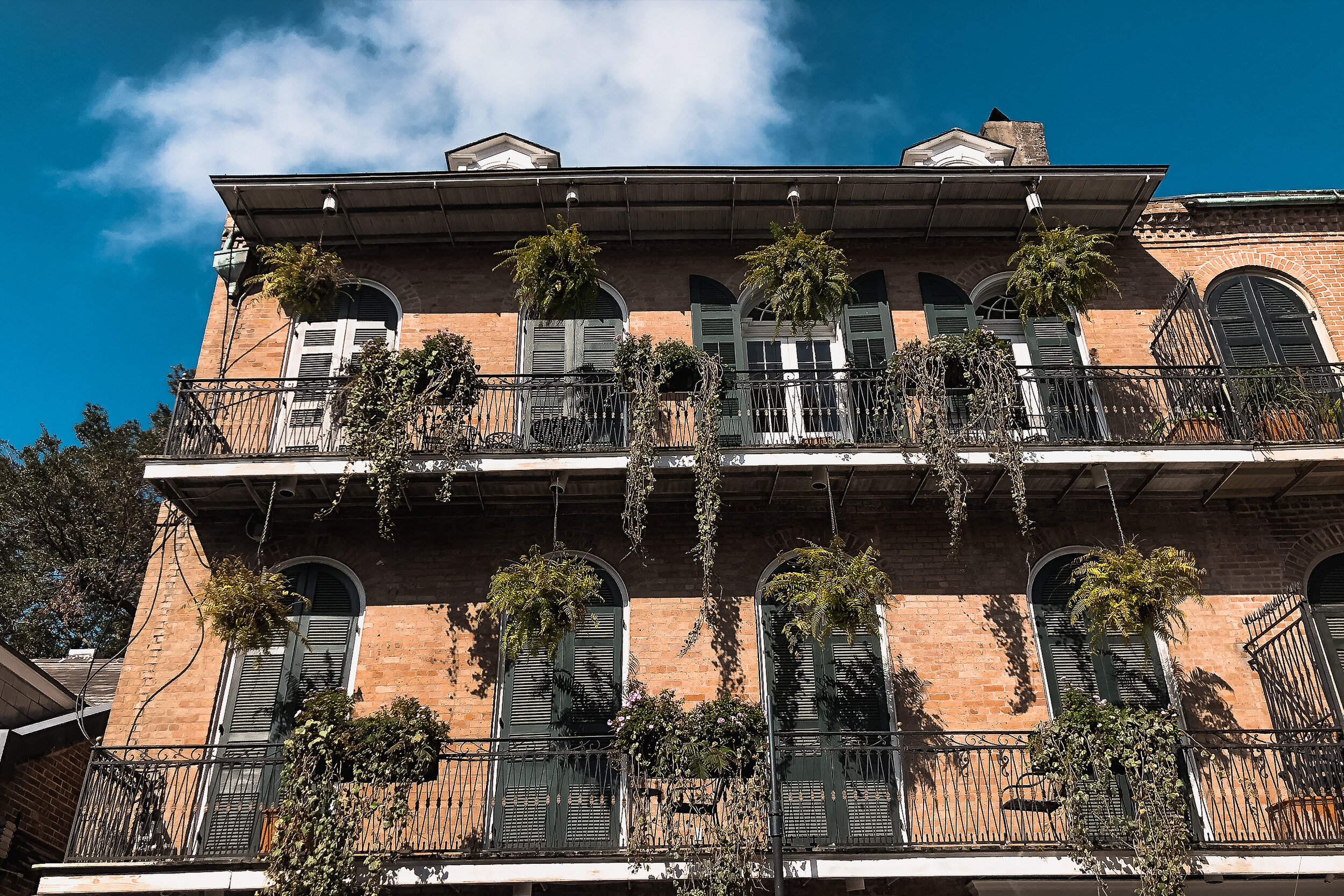
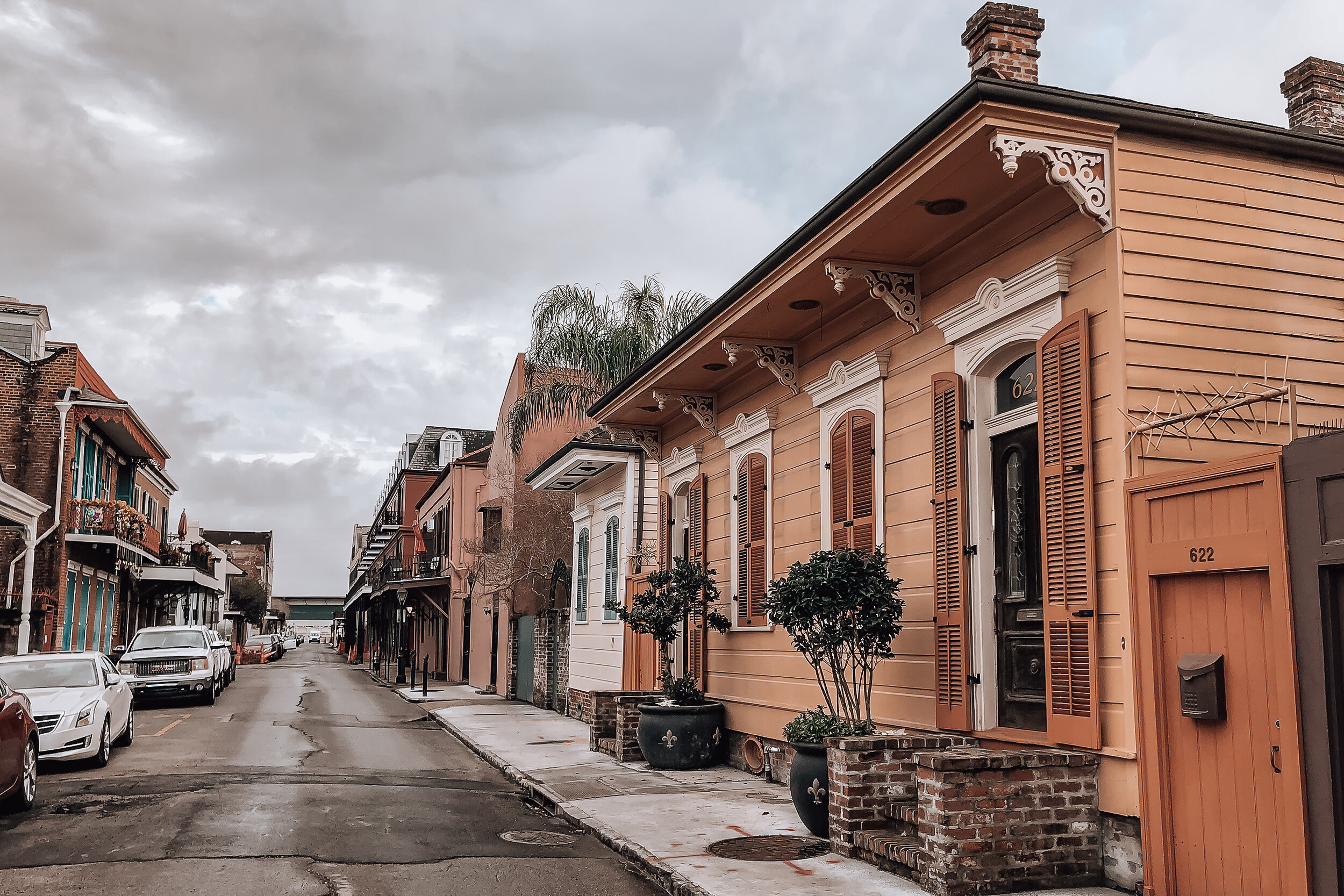
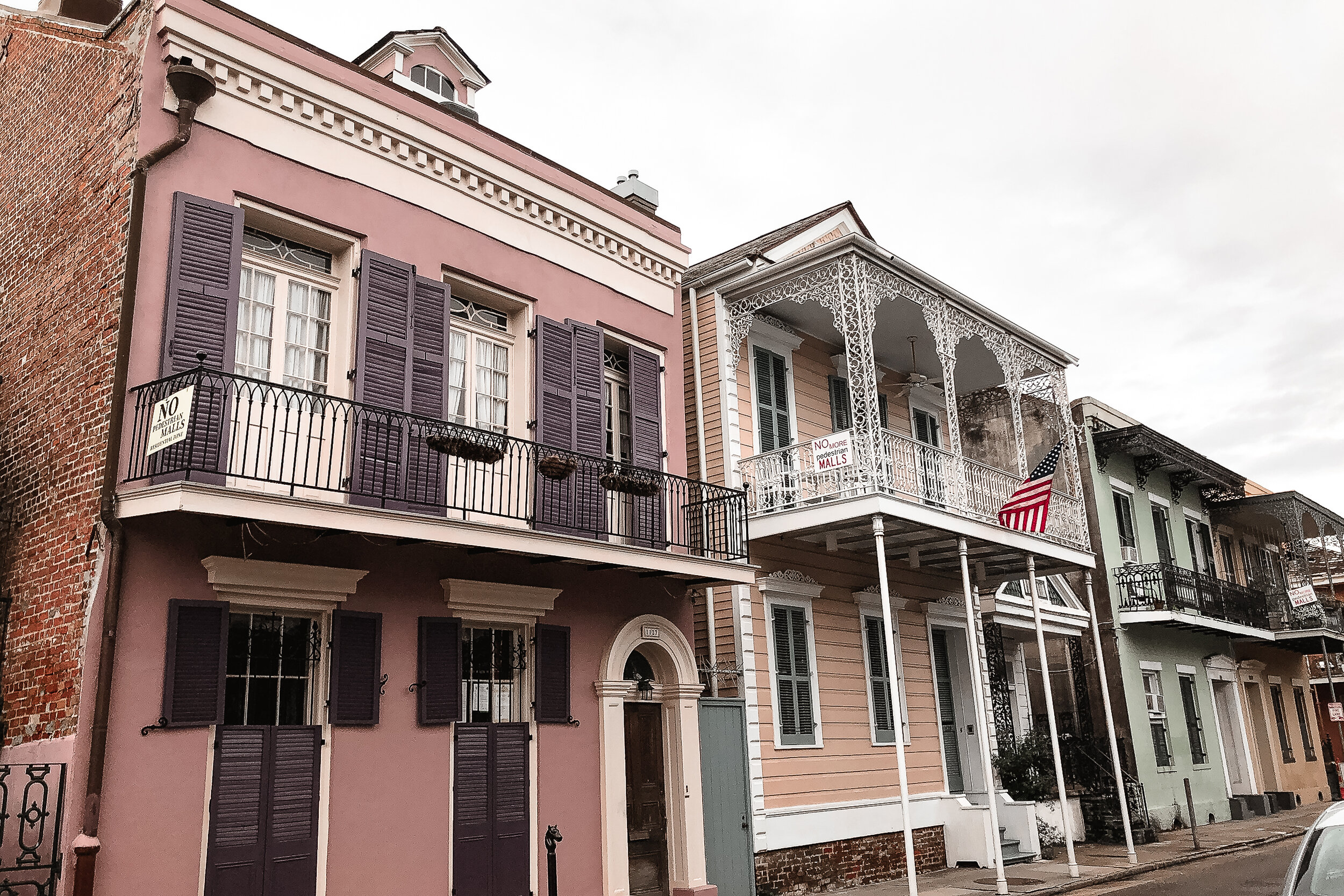
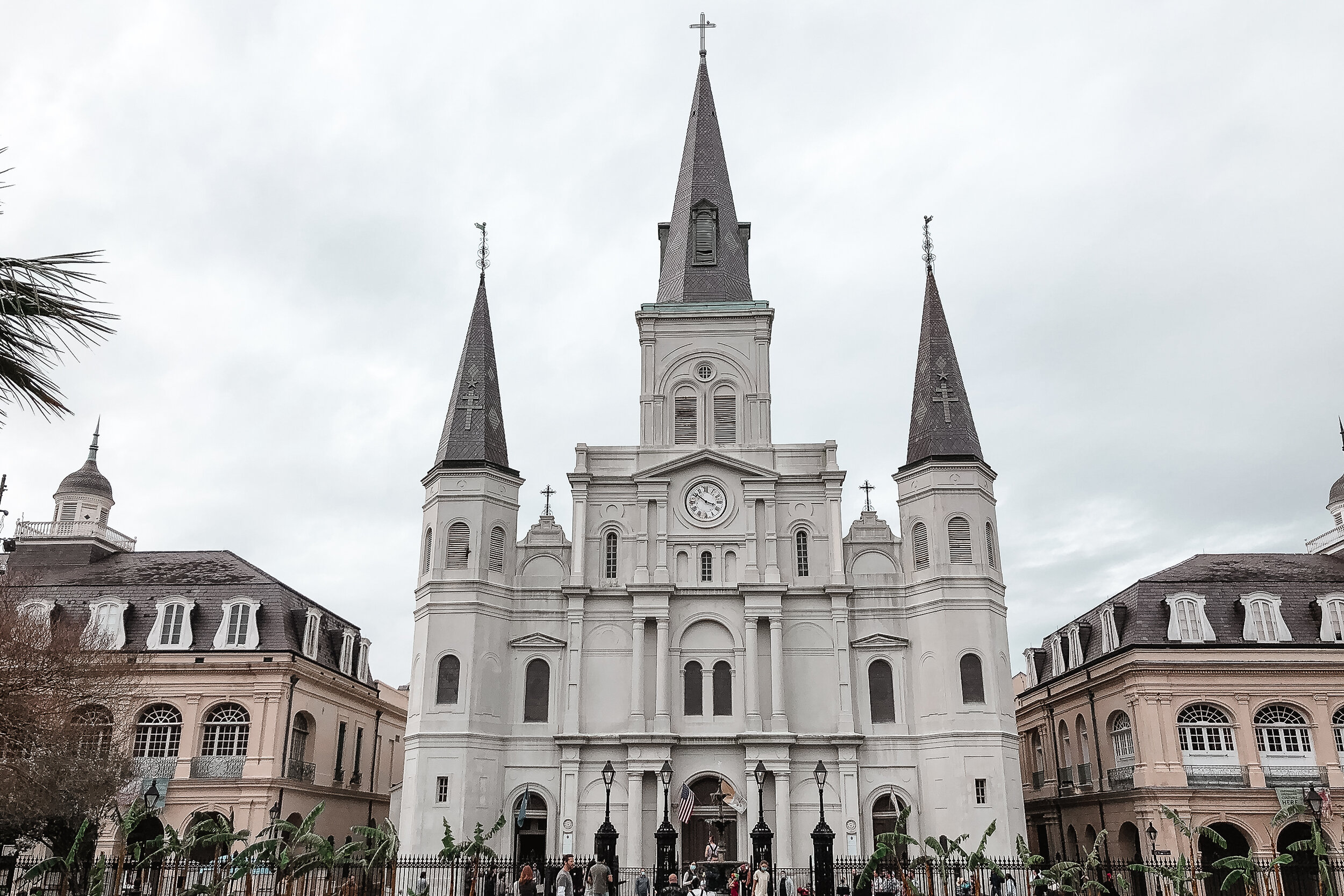
Things to Do
Jazz on Frenchman Street. This is the place to be for dancing and live Jazz. There are a number of late night bars, creole restaurants and artist markets to make for a memorable night. It’s much tamer and more authentic than the famed Bourbon Street.
Ride the St. Charles Street Car. The street car follows St. Charles Avenue, an oak tree lined street covered in Mardi Gras beads. The street car is the perfect way to get across town while admiring the historic homes and mansions in the Garden District.
Order a To-Go Daiquiri. Almost every bar on Bourbon St. offers a selection of frozen daiquiris made to go. As long as it’s in a plastic container, it’s legal to publicly drink anywhere in New Orleans.
Beignets at Café du Monde. Visit the original location, located in the French Market, the most famous place to order a beignet and cafe au lait. We were lucky enough to visit while a brass band was playing out front.
Beignets are fried rectangular pieces of dough covered in powdered sugar.
Cafe au lait is French for coffee with milk.
Enjoy Creole Cuisine. A mix of West African, Indigenous American, French and Spanish flavors. Some of our favorite dishes are gumbo, catfish po’ boys and charbroiled oysters.
Watch the Sunset at Lake Pontchartrain. We visited Breakwater Park to watch the sunset. The calm shallow waters reflect every color in the sky. Afterwards, there are a number of seafood restaurants nearby to enjoy dinner.
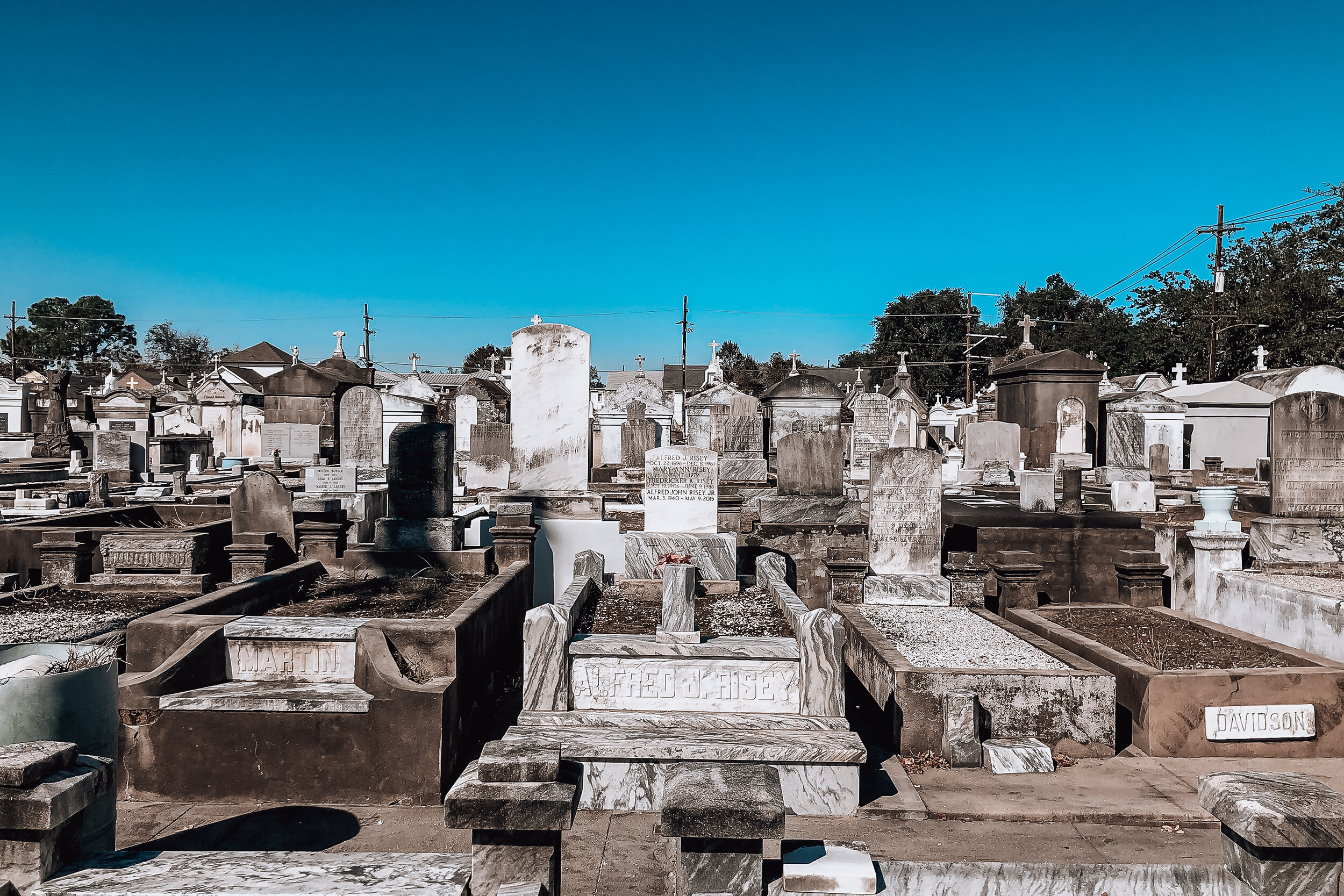
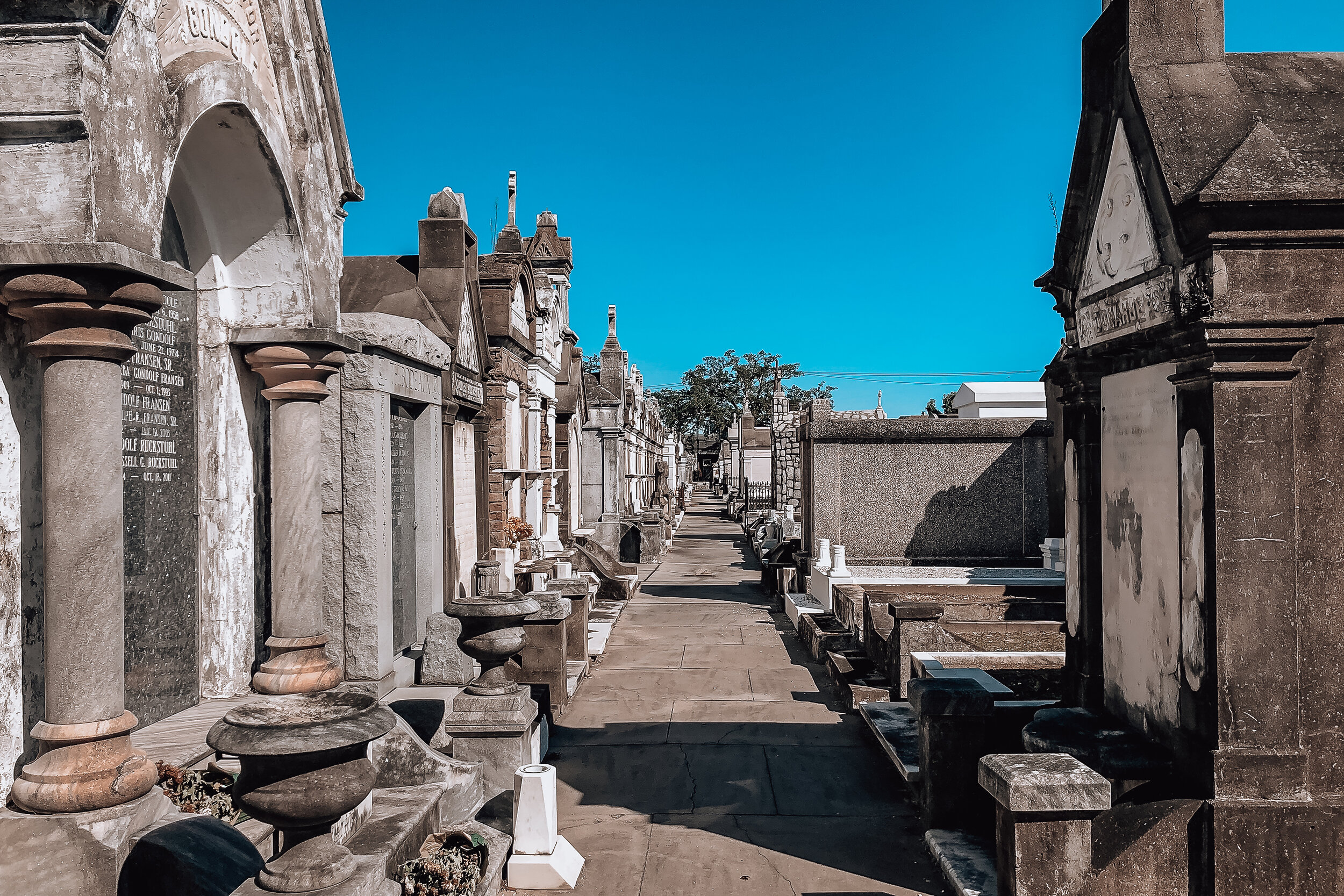
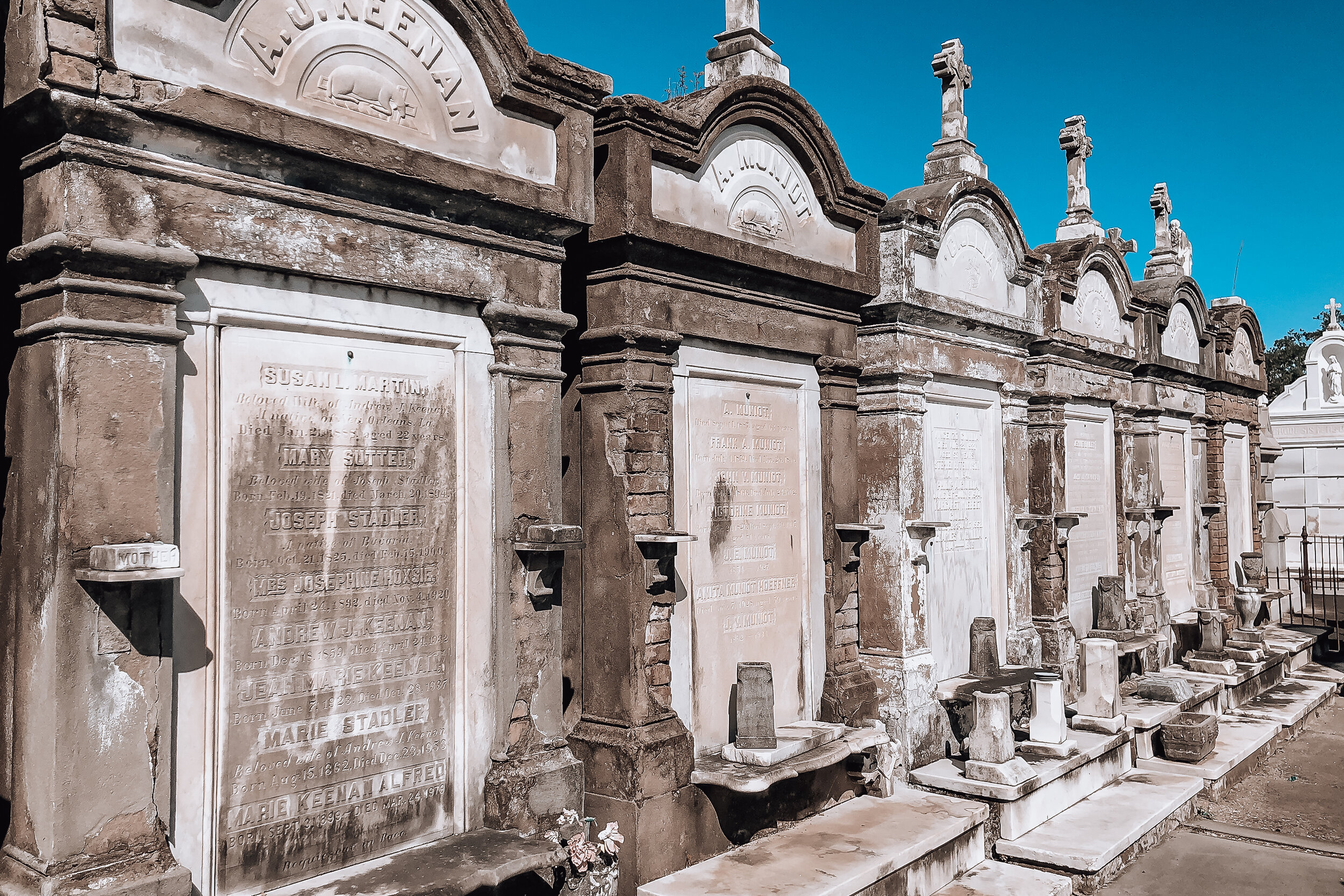
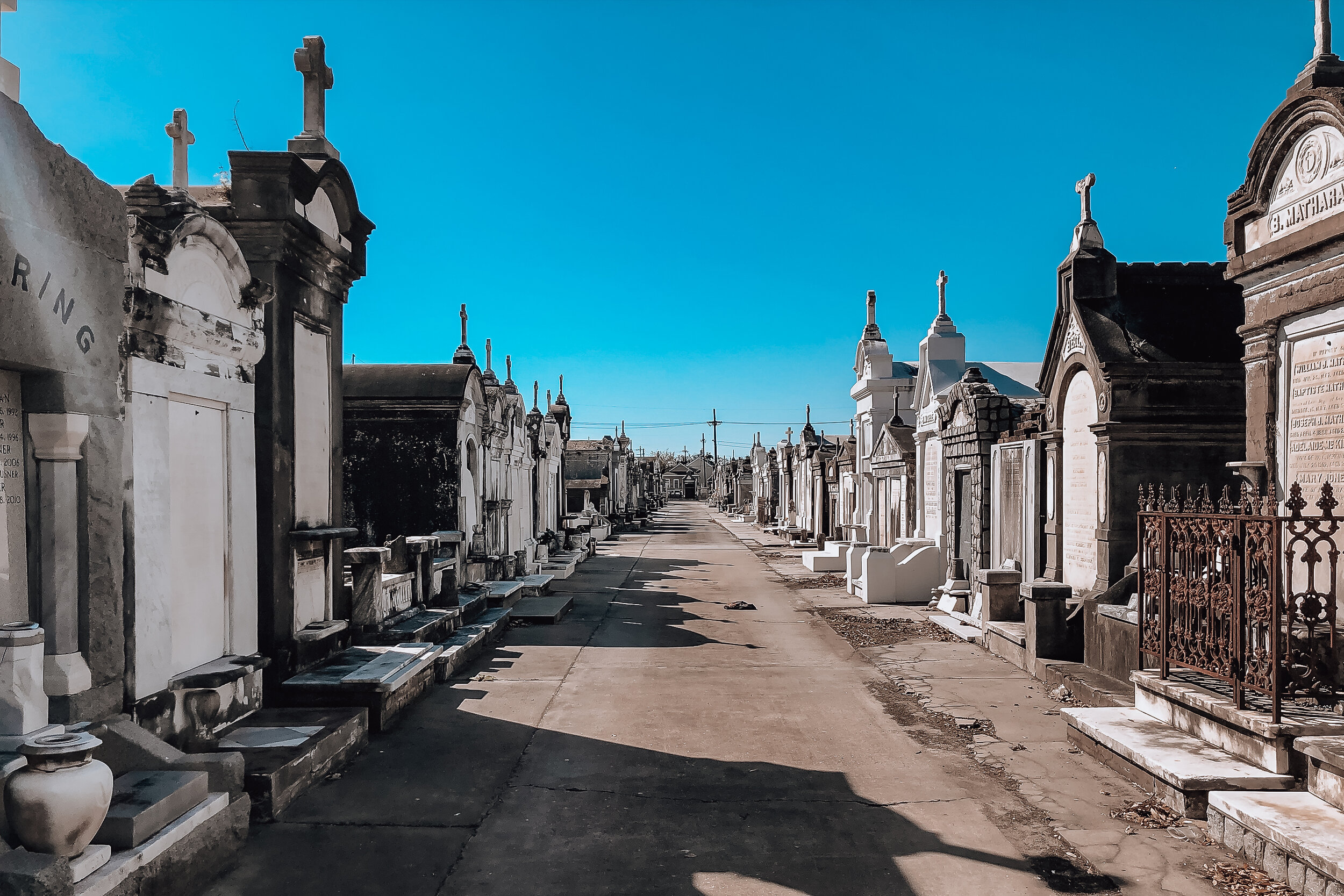
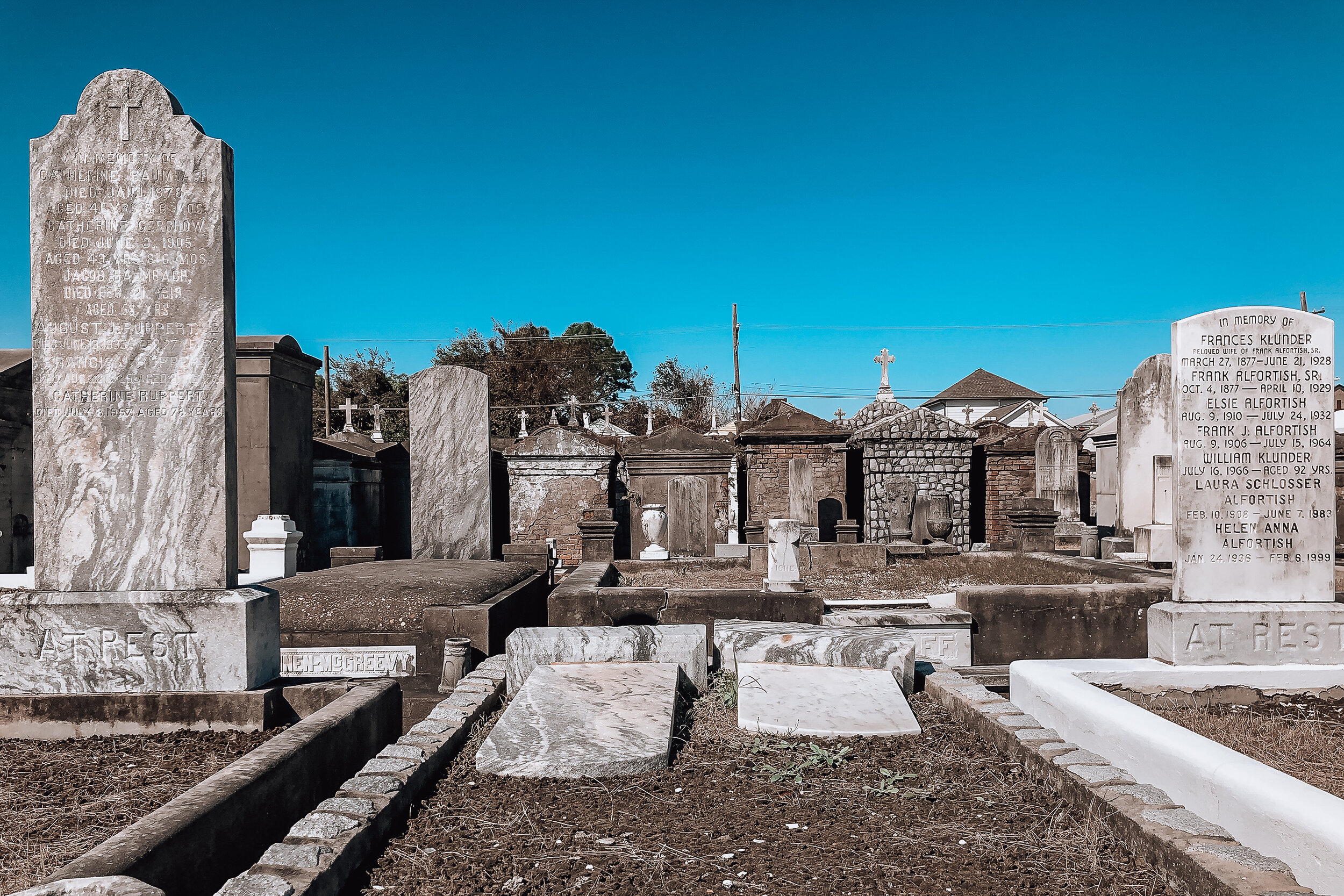
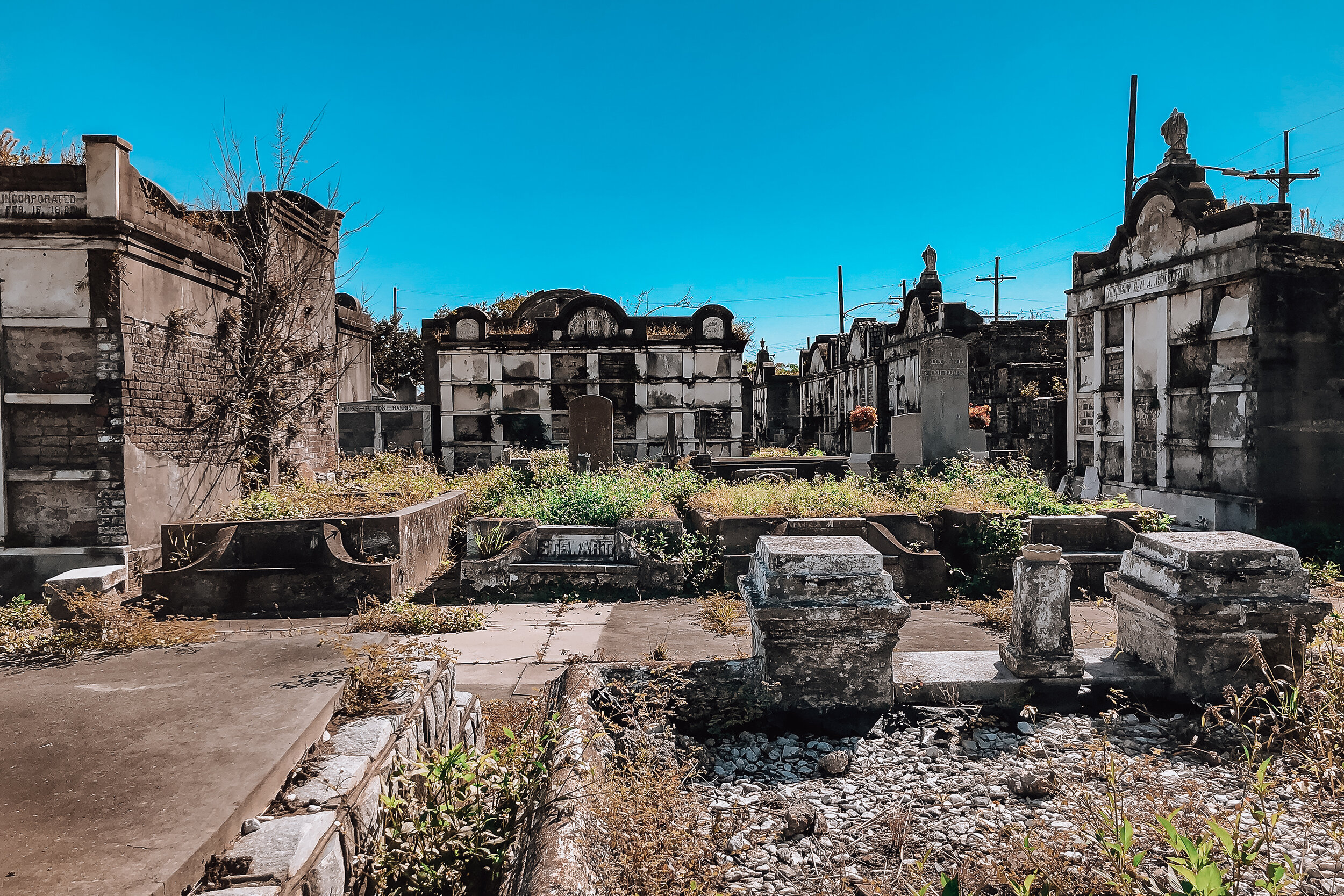
Visit a Cemetery. The dead in New Orleans are buried above ground in elevated plots or mausoleums because the city sits below sea level. We walked thorough the rows of St. Joseph Cemetery and Lafayette Cemetery No. 2. Both of which were open and free to tour.
Walk down Crescent Park. A riverfront park located along the Mississippi with a 1.4mile path. Watch the ships pass by and sound their fog horns. Afterwards, cross the “Rusty Rainbow Bridge” into the ByWater neighborhood.
Cross the Mississippi. There is a ferry located along the river front at the end of Canal Street that crosses the Mississippi to Algiers Point. It’s a quiet neighborhood to enjoy a po’ boy for lunch, look back at the skyline and walk the levy.
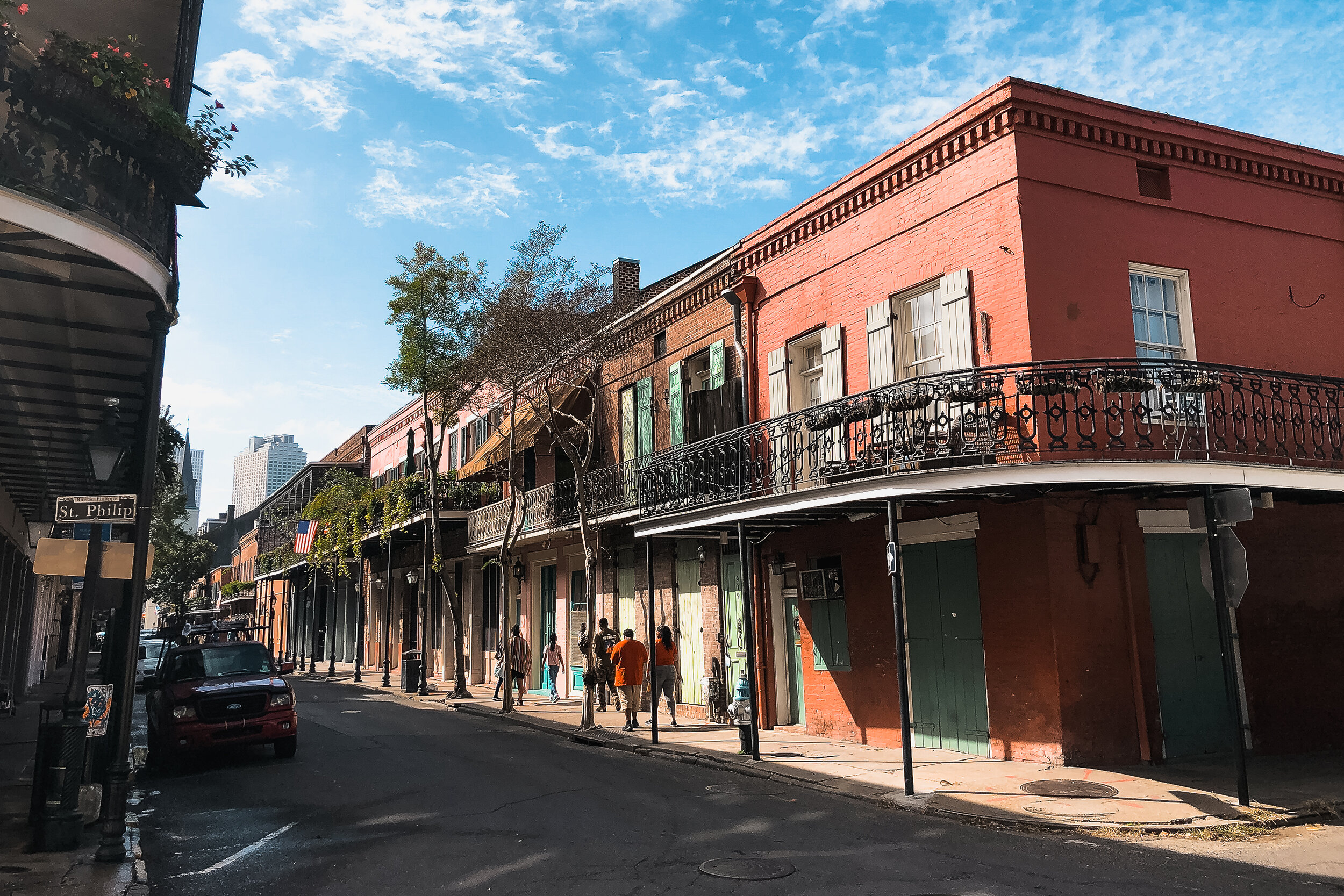
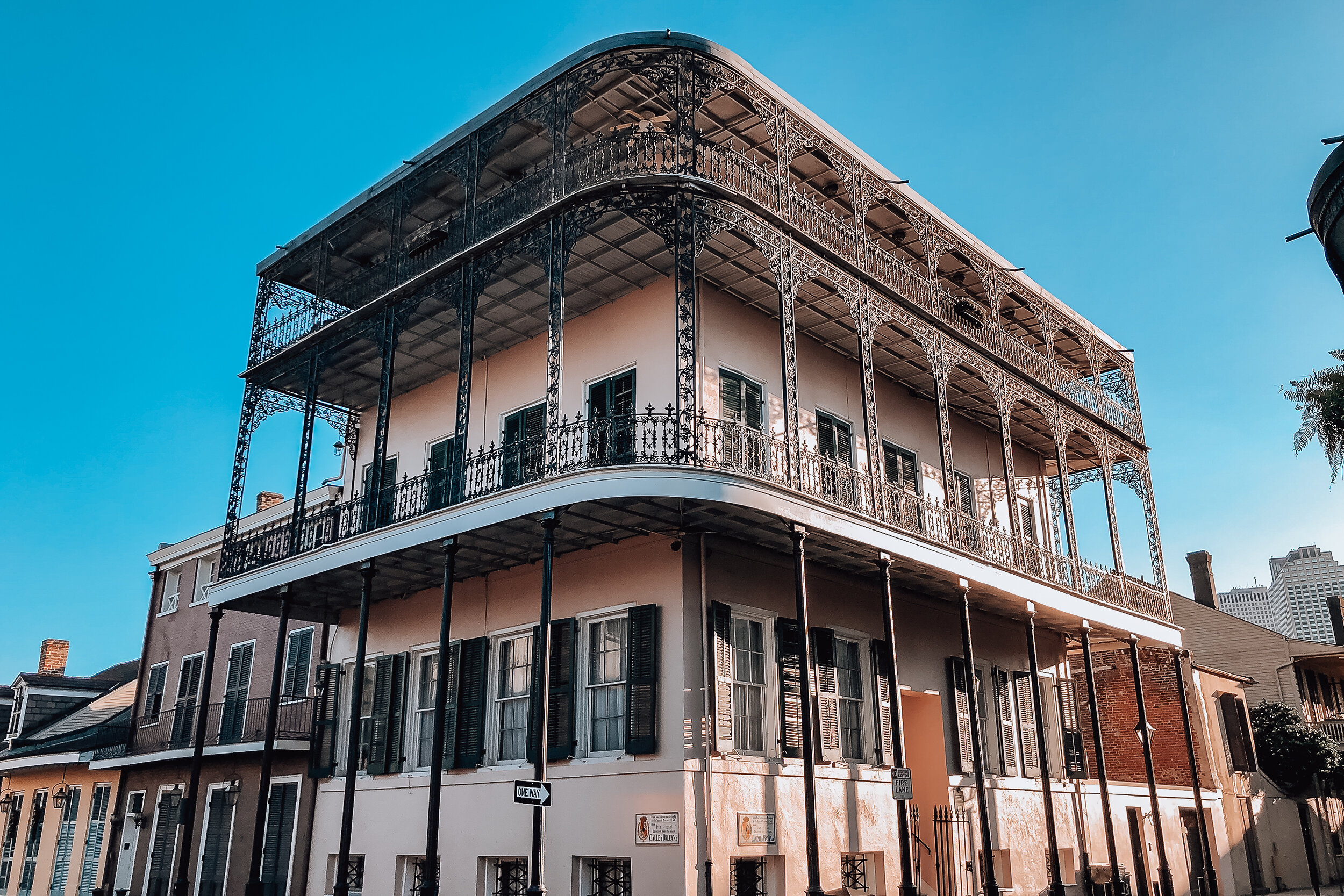
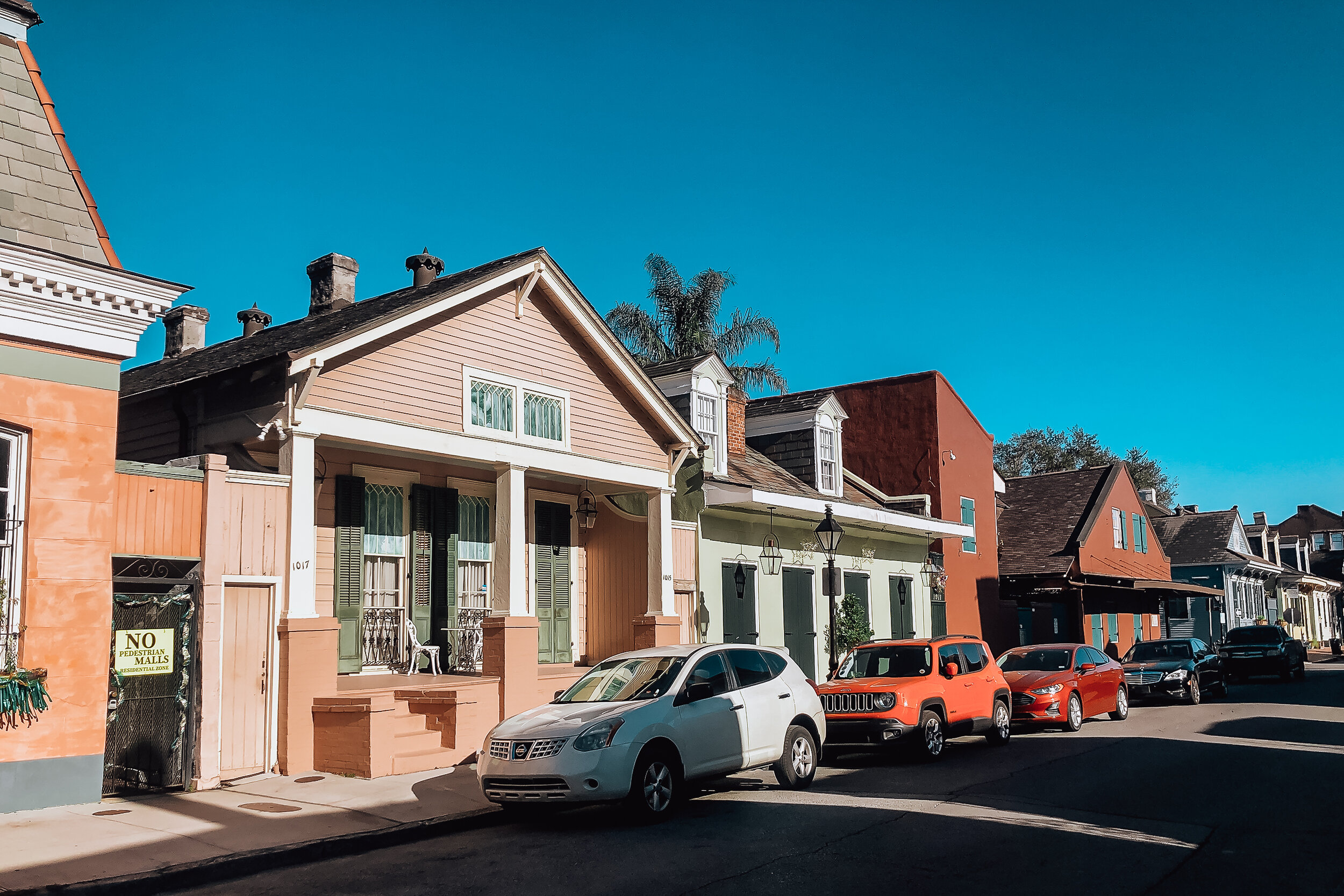
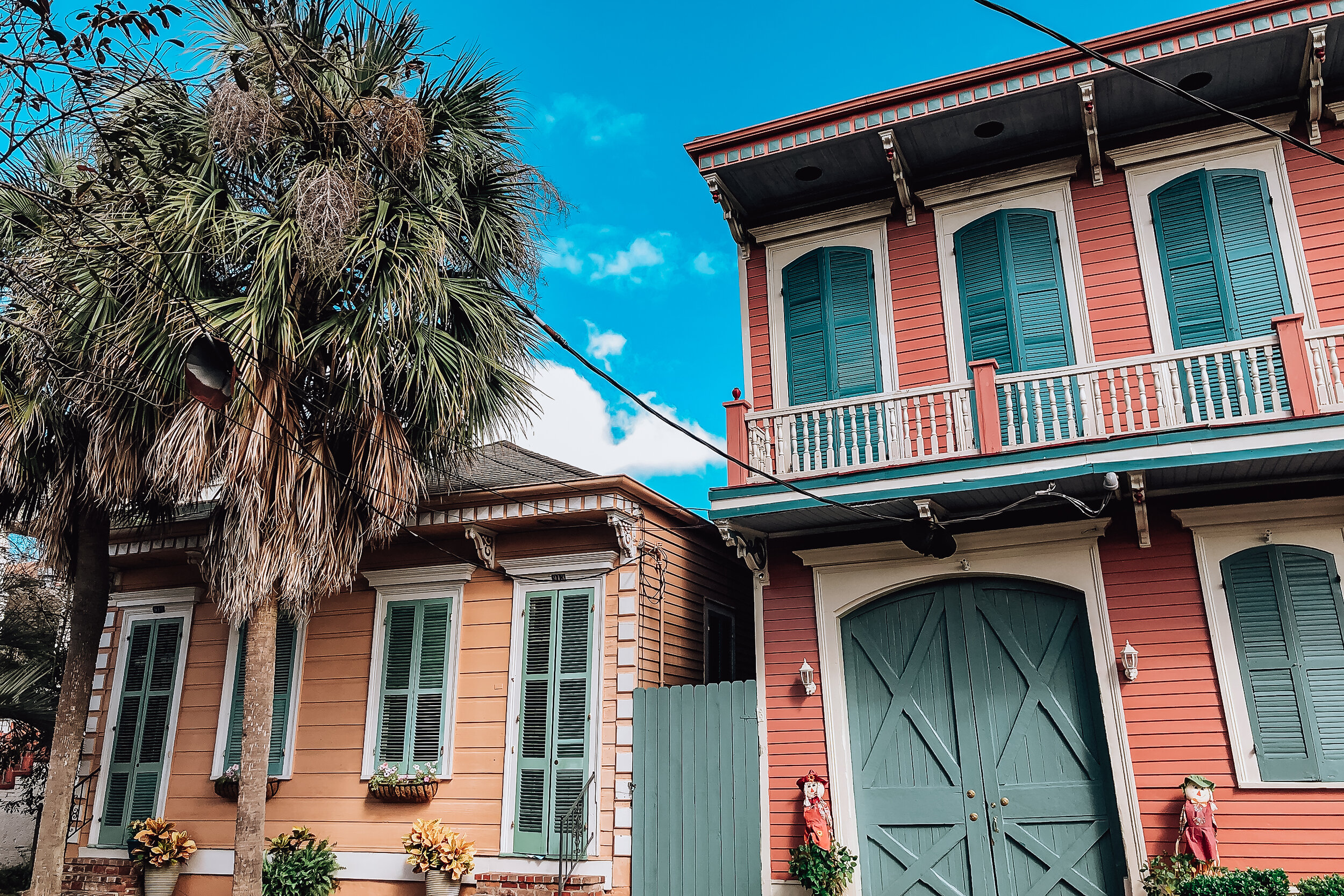
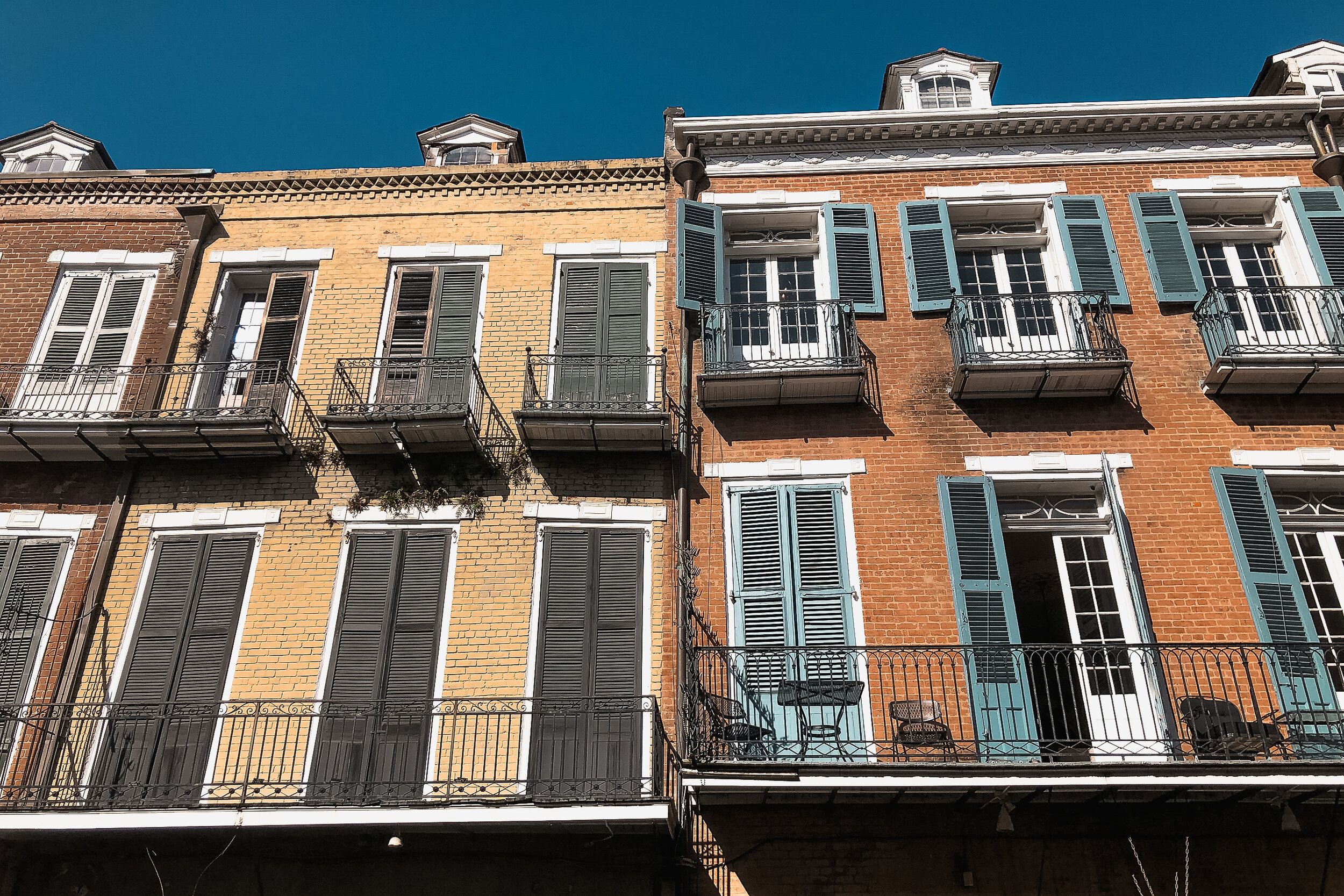
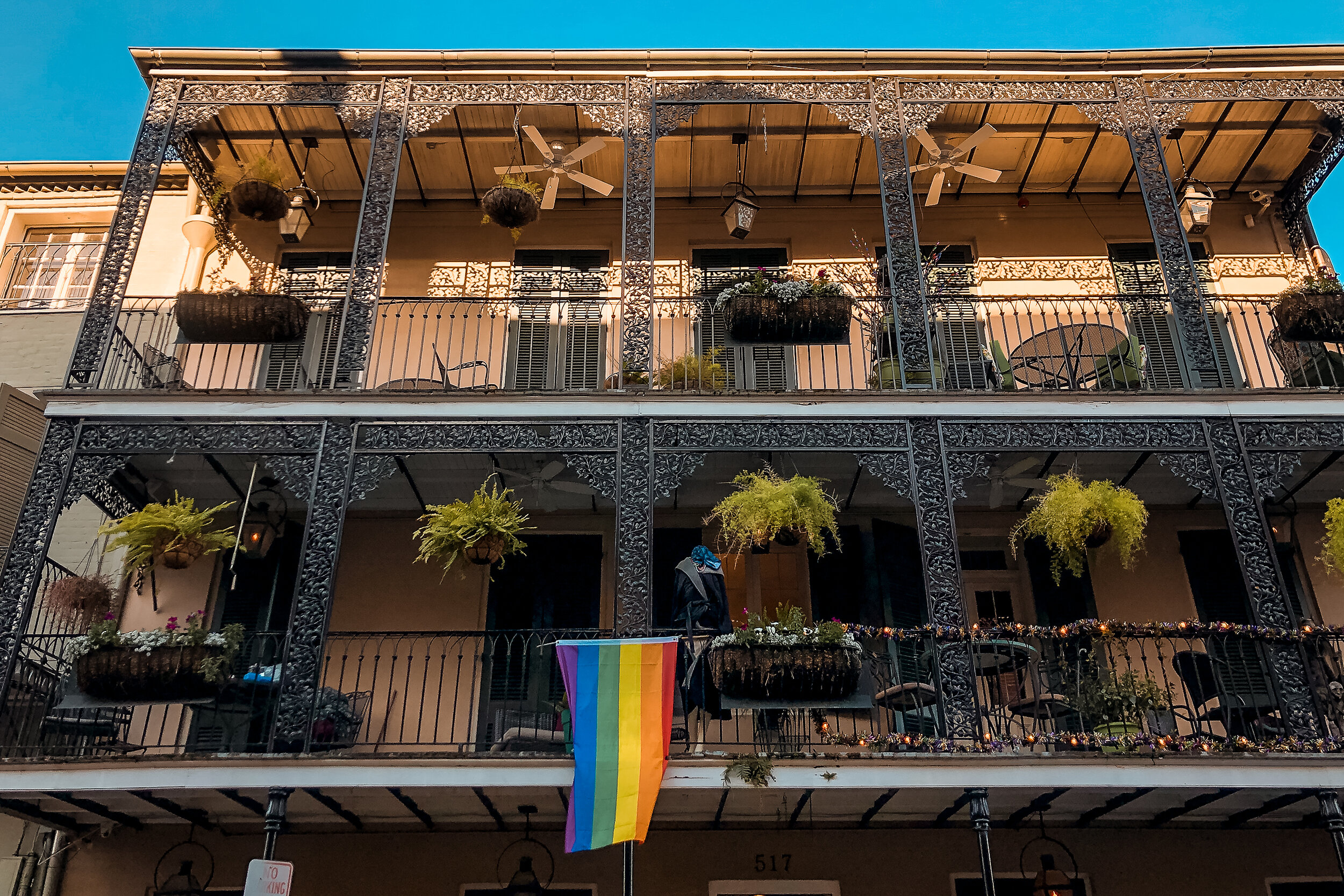
Neighborhoods & Streets
The French Quarter. The Quarter is the historic center of New Orleans with Spanish and French architecture, gas lit lanterns and cobble stone streets. It’s a hub for live Jazz, all night cocktail bars and Creole cuisine. We loved wandering its quiet side streets as well as bar hopping on Bourbon Street.
Bourbon Street. The city’s most well known street located in the French Quarter. This street is often packed with people flaunting Mardi Gras beads, having the fortunes read and ordering to-go drinks from the colorfully lit all night bars. It gets a bit crazy but is worth visiting at least once.
The Garden District. A residential district flanked between Magazine St. and St. Charles Ave. The neighborhood is home to historic mansions and cottages, large oak trees and leafy palms. It’s a beautiful neighborhood to explore on foot or along the St. Charles Street Car.
Magazine Street. One of the city’s Main Streets with restaurants, bars, boutiques, art galleries, vintage shops and creole architecture. It’s about 6 miles long, stretching from The French Quarter through The Garden District and into Uptown. Every stretch of it is well worth exploring.
Irish Channel. Located between Magazine Street and the Mississippi River, this cute residential neighborhood has many of our favorites restaurants, cafes and bars. There are lots of great Airbnb’s to stay at here.
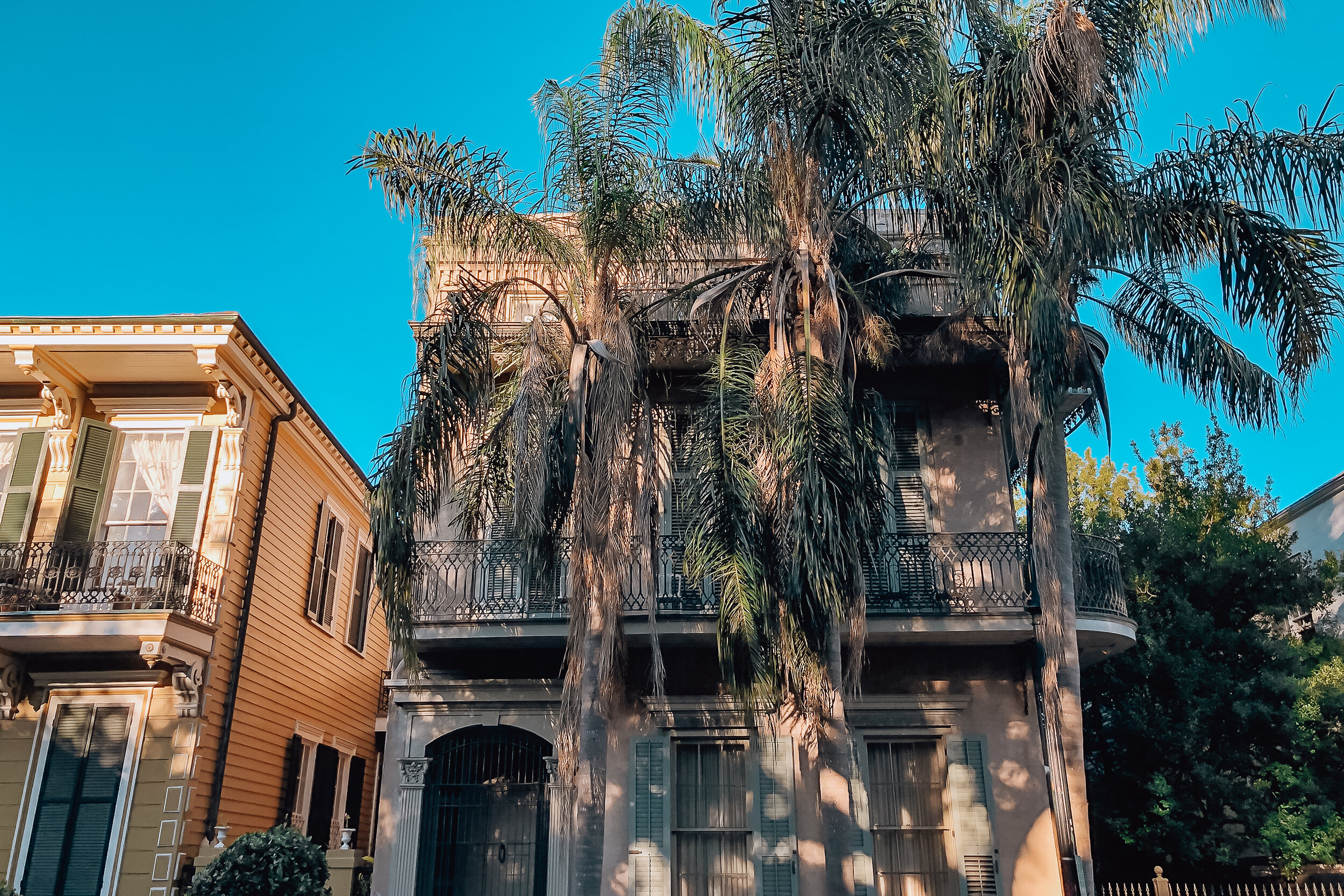
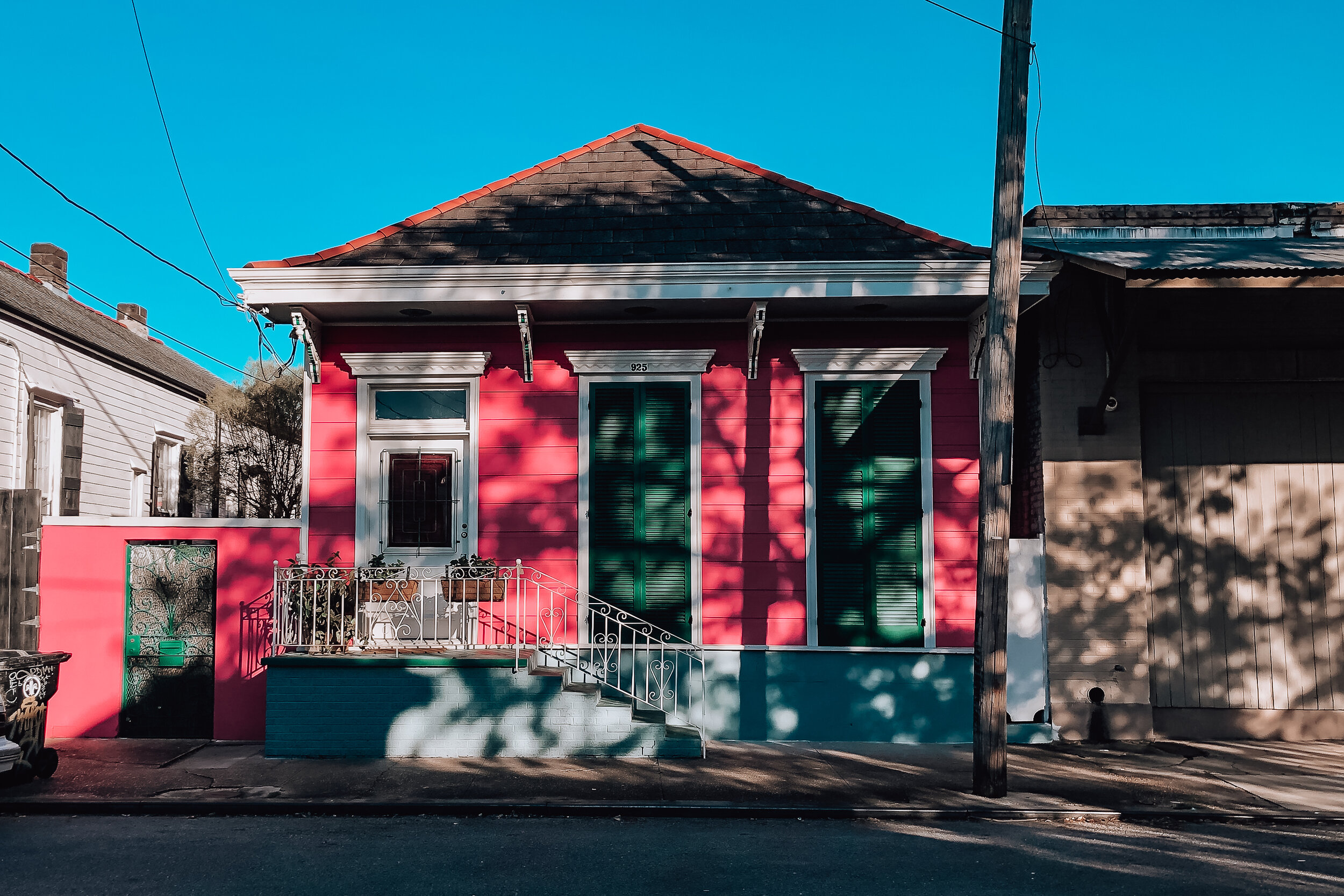
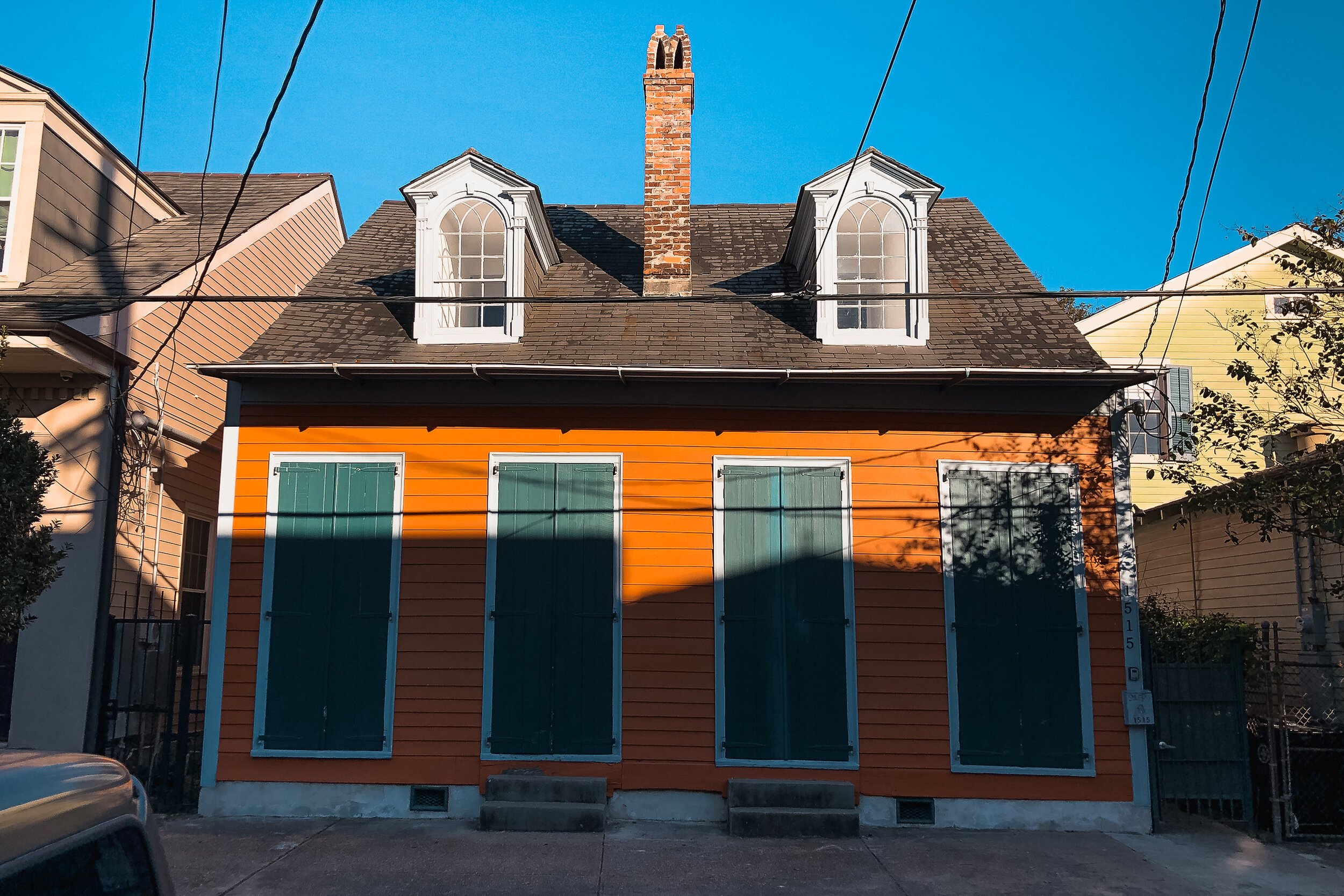
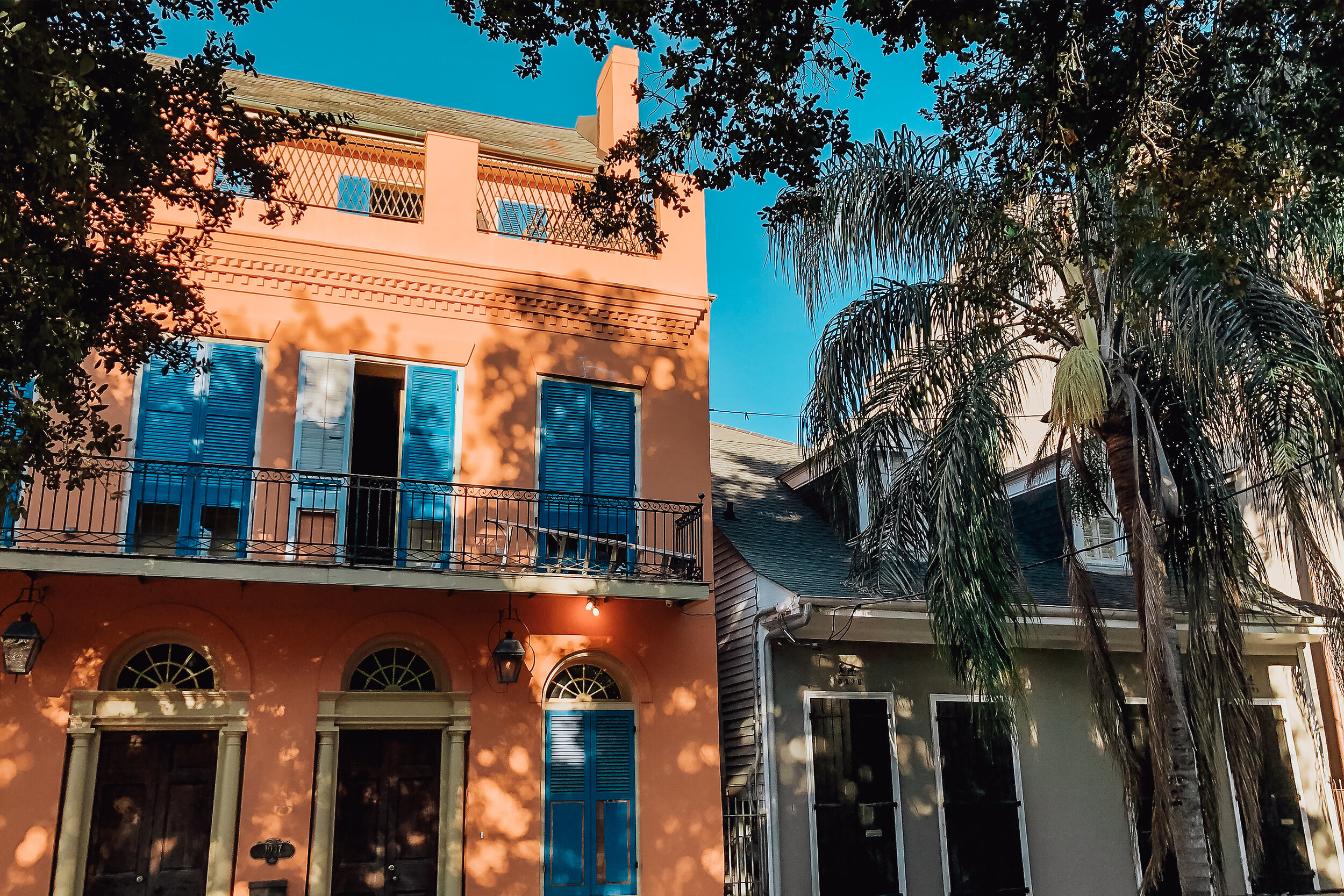
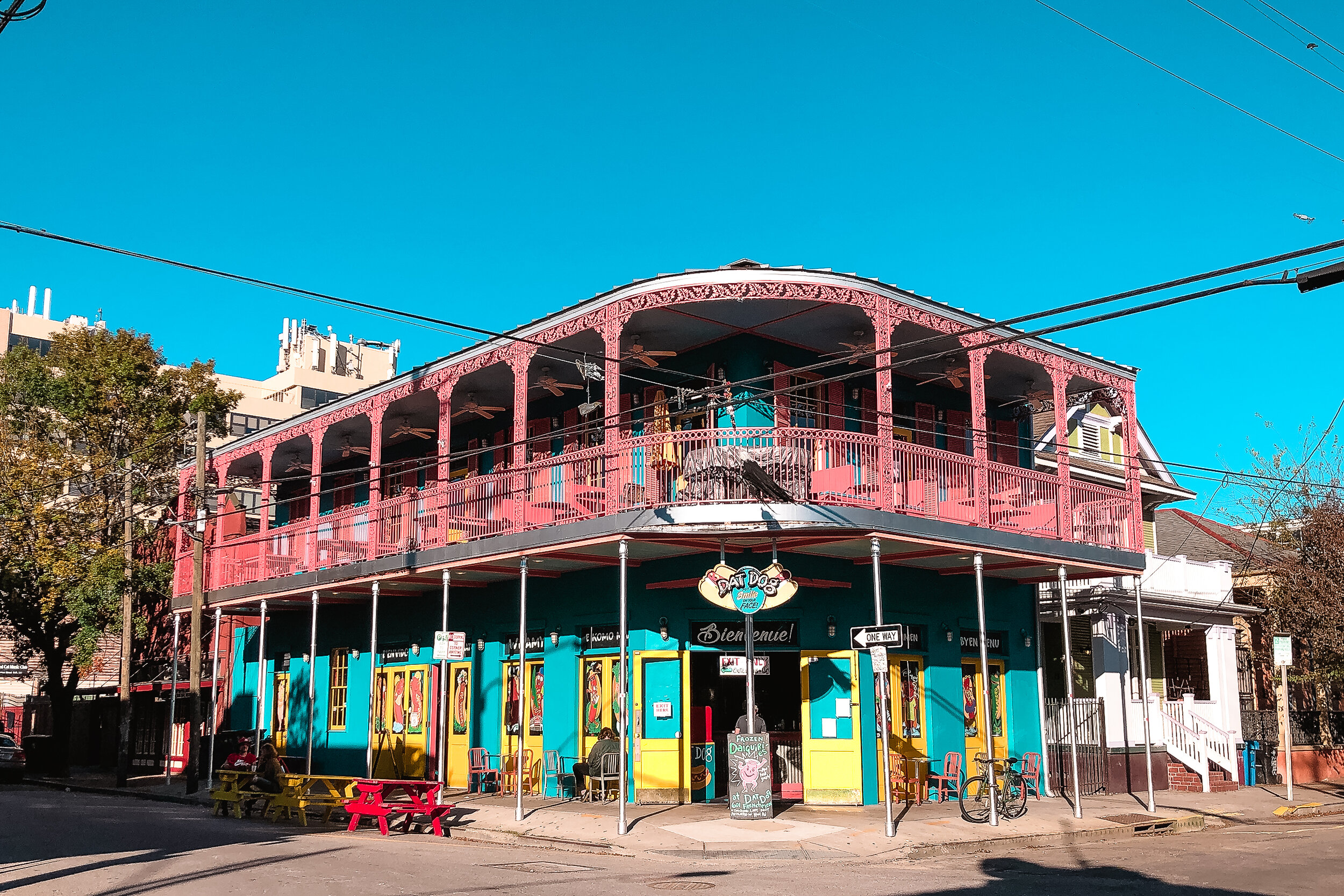
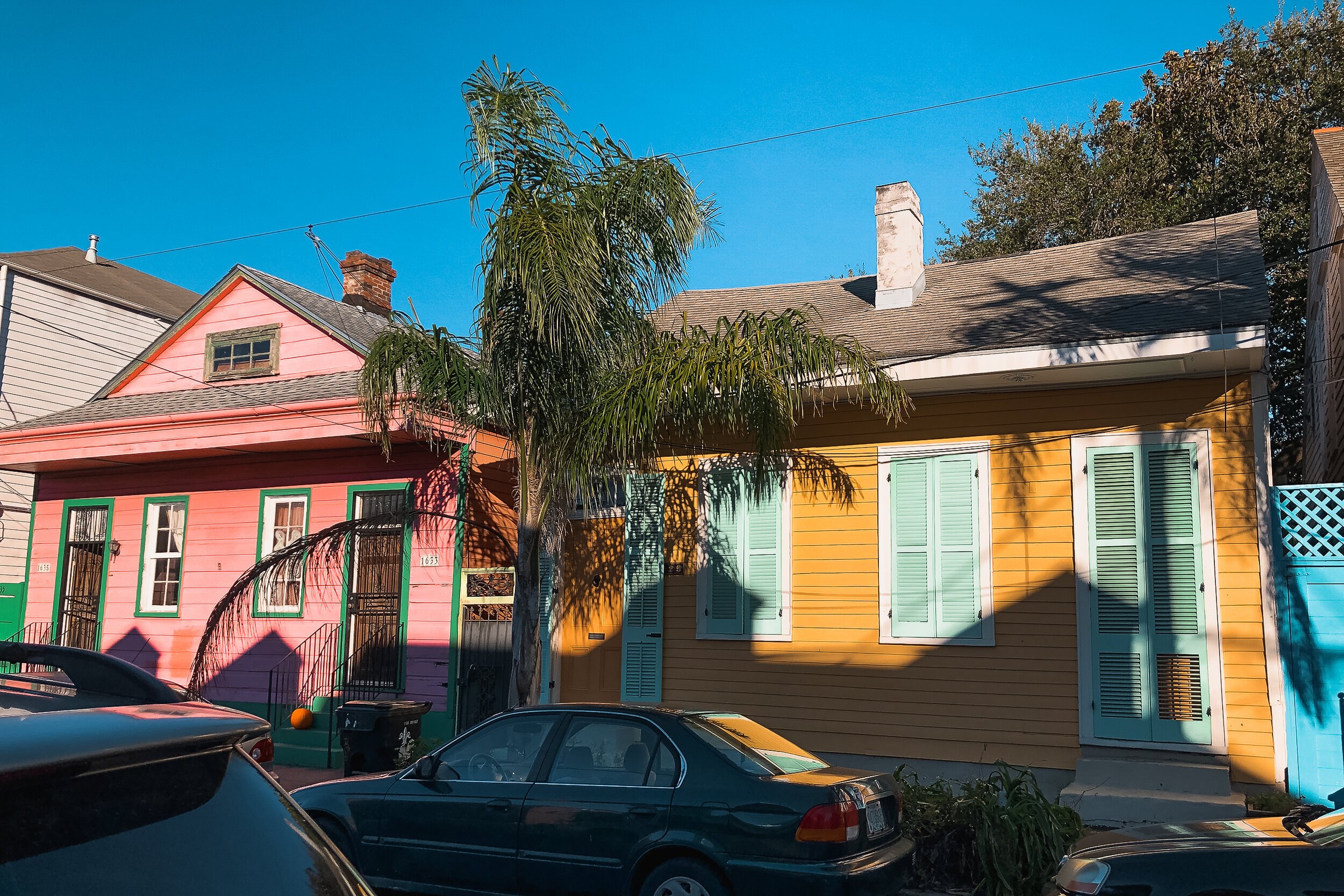
Marigny. This beautiful neighborhood, just outside of the French Quarter, is a charming place to walk through to look at the brightly colored Creole cottages and shotgun houses. There are also lots of great Airbnb’s here. Come for Frenchman Street, the artists markets and local restaurants.
ByWater. Basically an extension of Marigny, this neighborhood is a little more bohemian/hipster with flea markets, cafes, cocktail bars and funky restaurants.
Arts/Warehouse District. A former warehouse district converted into a hub for cocktail bars, high end restaurants and art galleries.
Uptown. A broad area on the Riverside of New Orleans. Visit Maple and Oak Streets for the restaurants and nightlife. Both areas are popular with Tulane and Loyola students.
Lavender Line. Not technically a street but it encompasses a number of gay bars in the French Quarter north of Bourbon Street, many along St. Ann Street. Some of our favorites are Café Lafitte in Exile and Good Friends Bar.
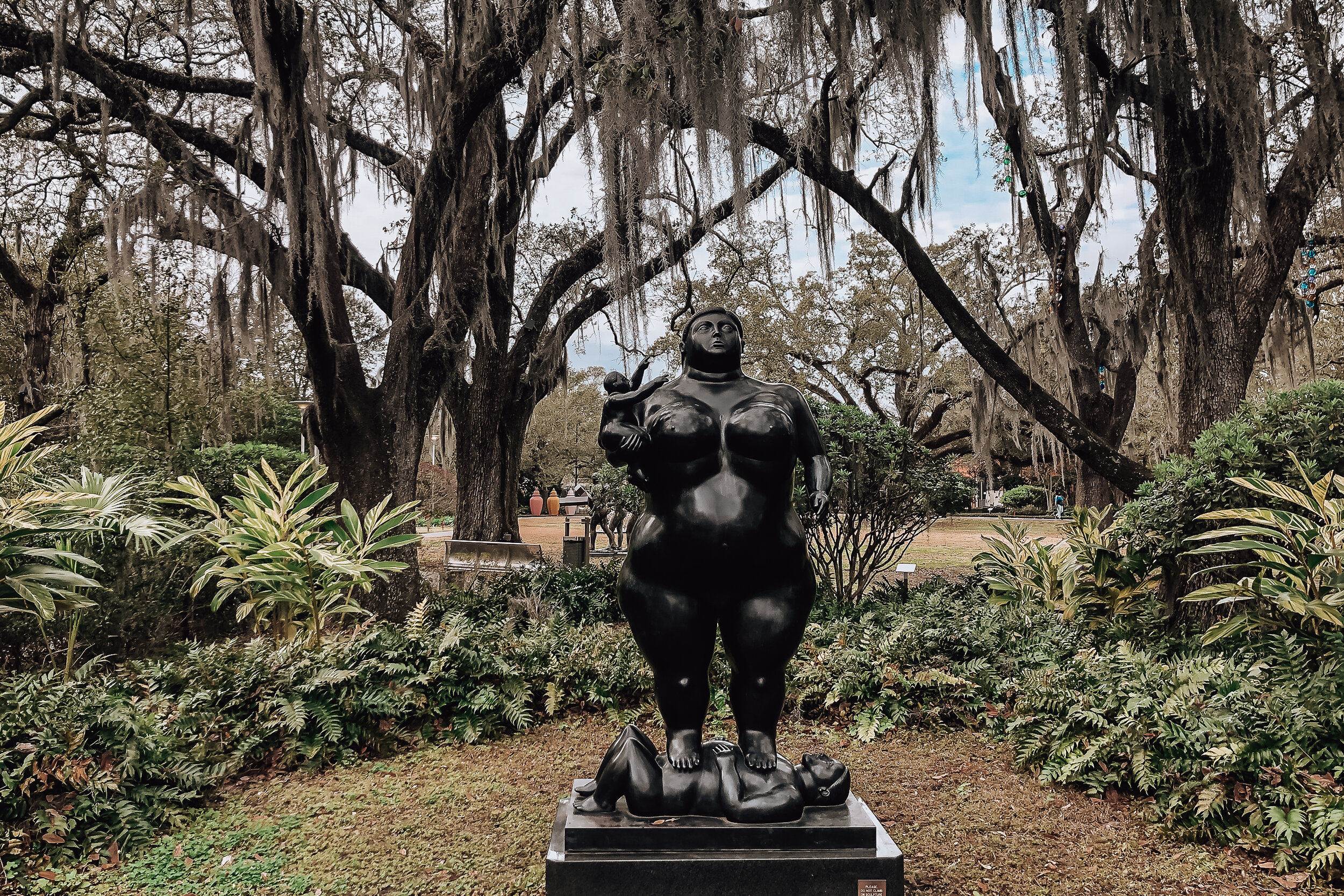
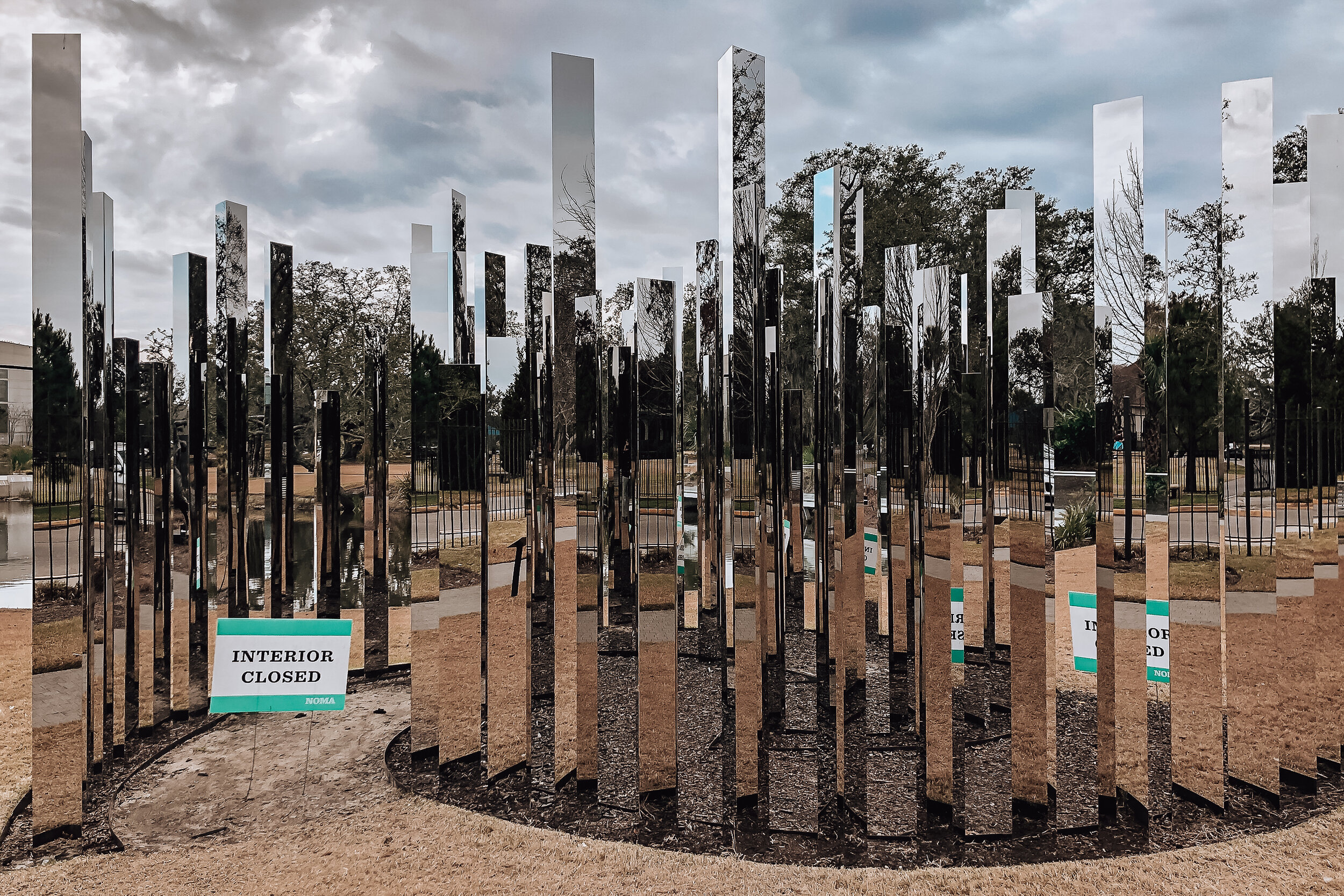
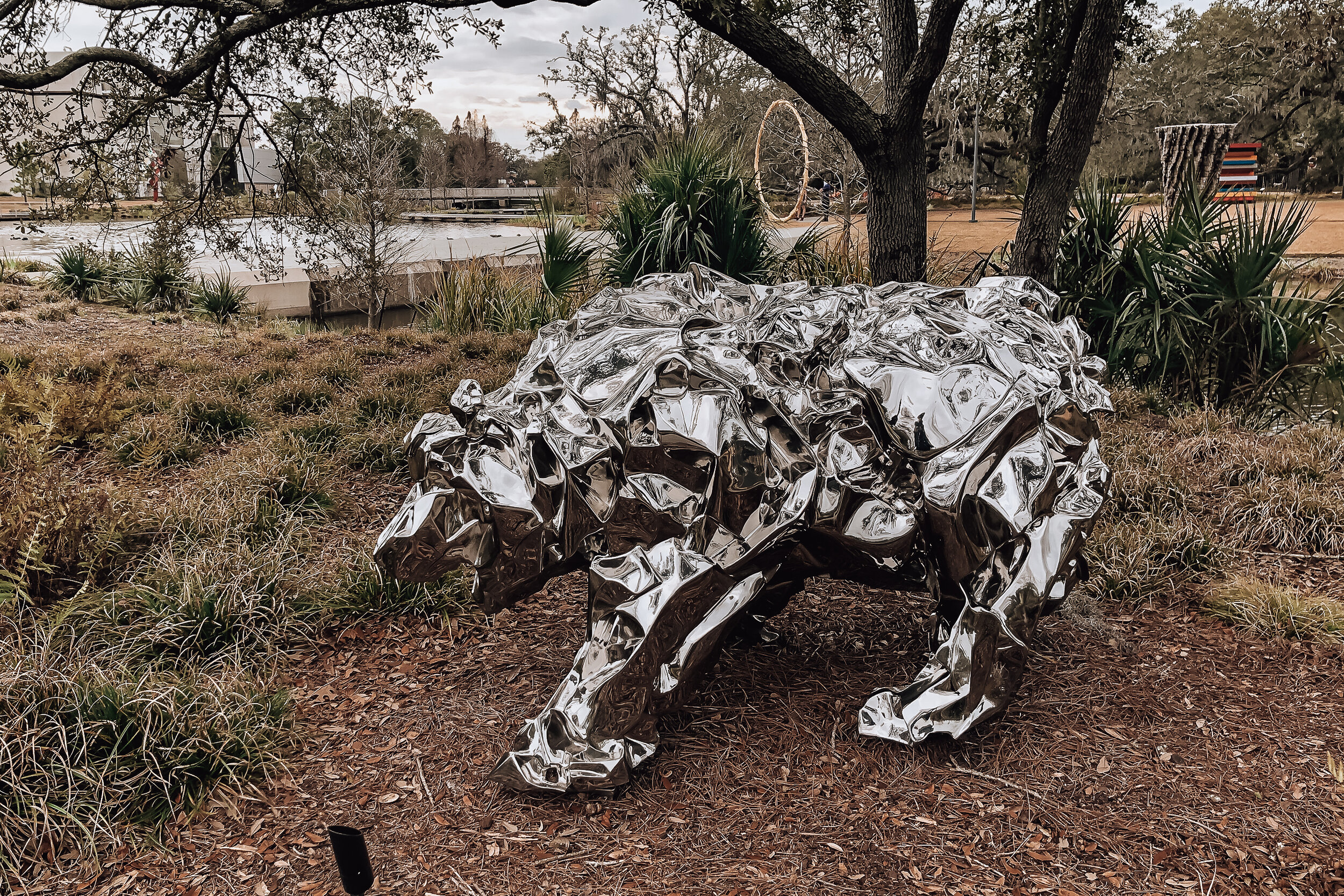
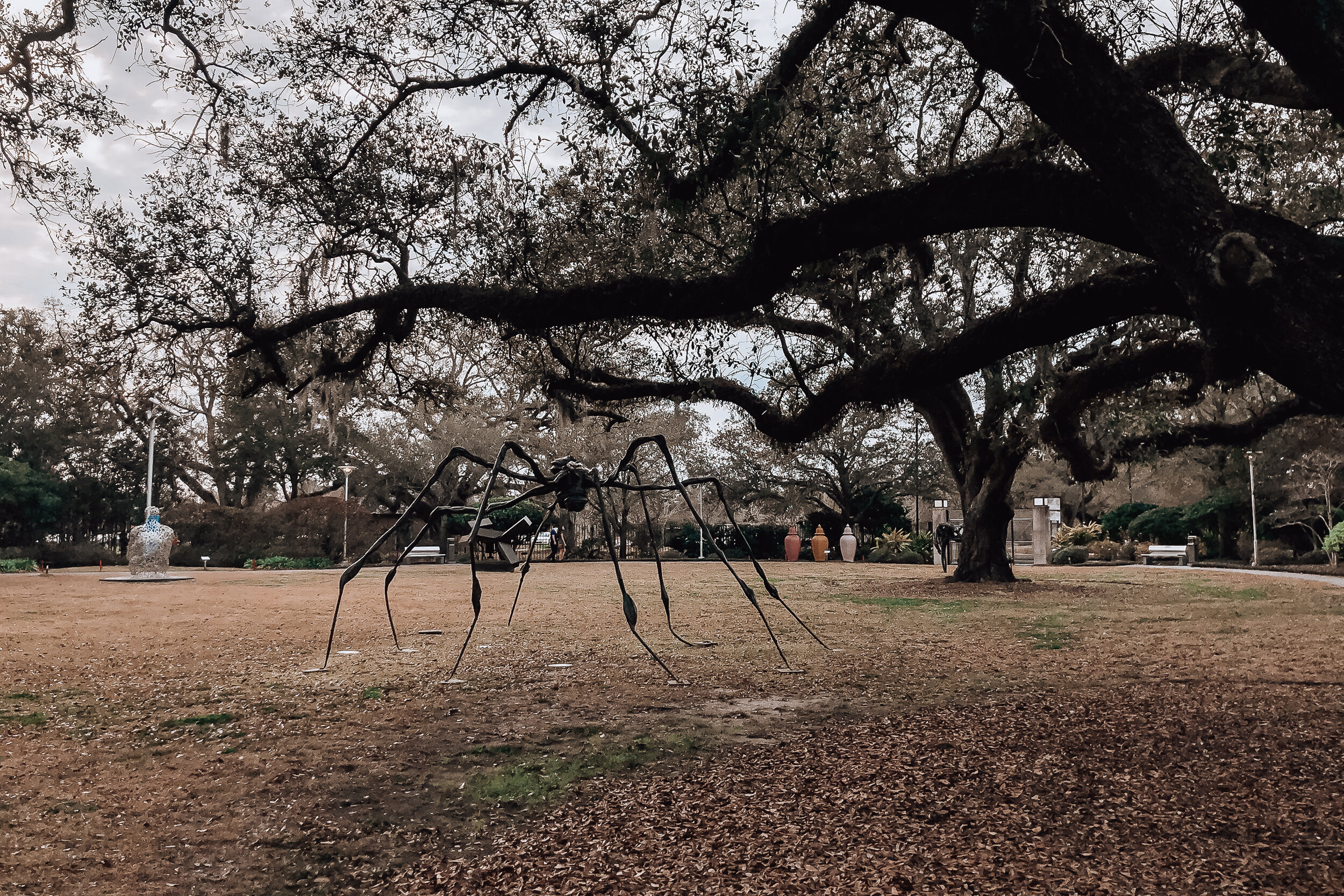
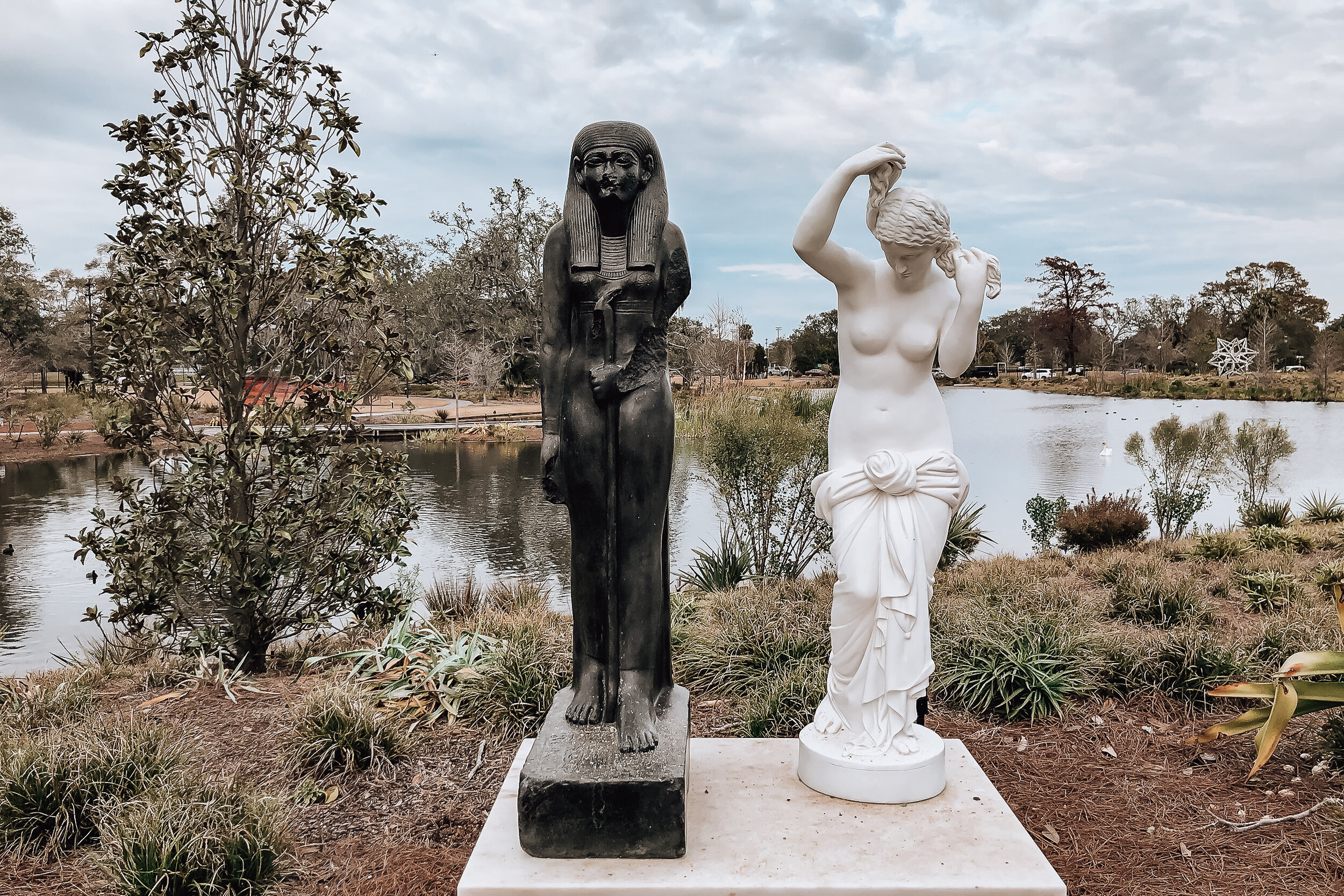
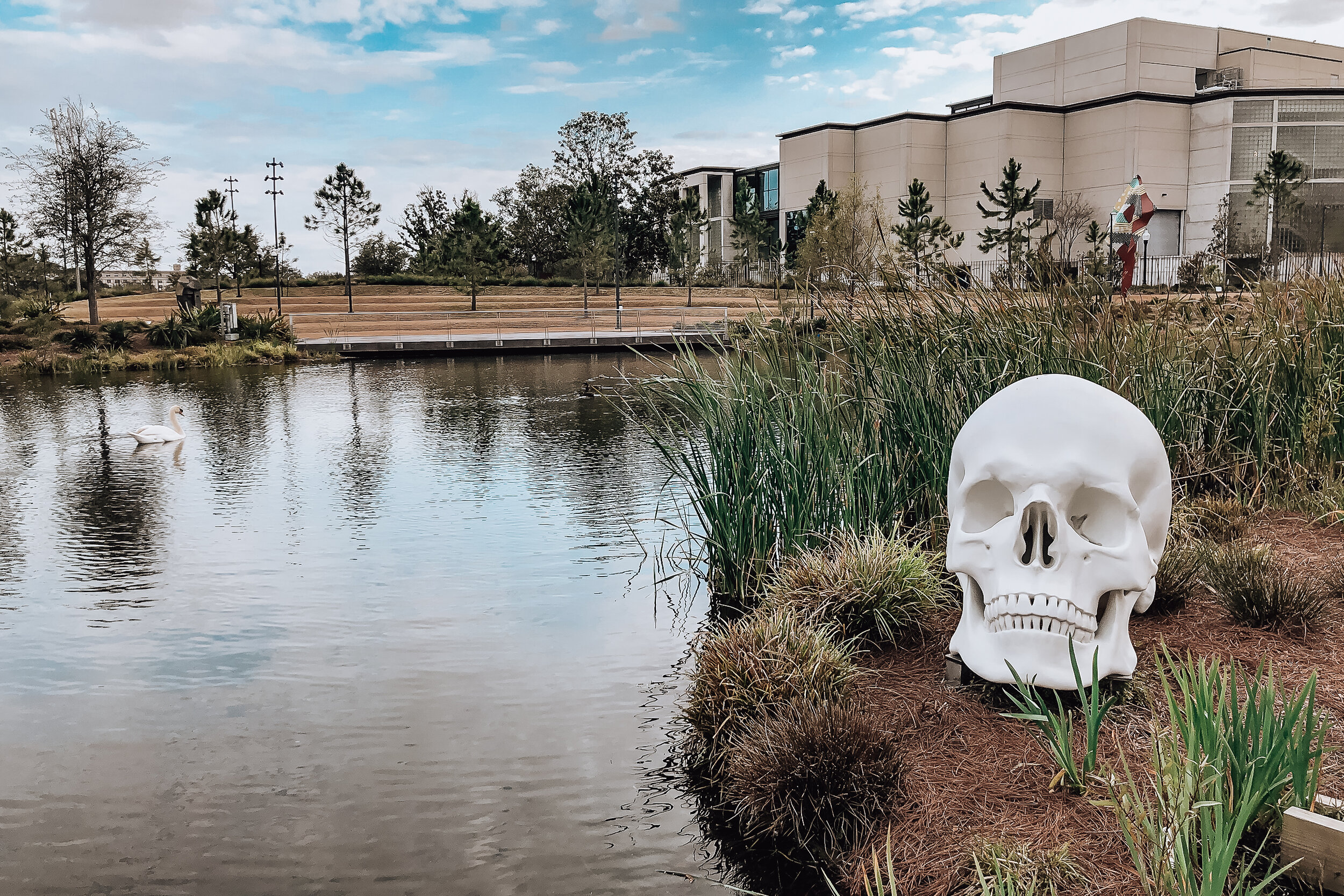
See Some Art
NOMA (New Orleans Museum of Art). The museum has a great collection of Southern, French and Modern painting, historic and multi-cultural artifacts and a remarkable sculpture garden with beautifully landscaped grounds. There is also a rotating gallery, it had a LGBTQ+ photography exhibit when we visited.
New Orleans Jazz Museum. A museum teaching about the origin of Jazz, some of its most notable musicians and its importance in New Orleans.
New Orleans Historic Voodoo Museum. A tiny but educational museum in the French Quarter with many voodoo artifacts and altars. It’s a great place to visit and learn more about the religion. They also offer cemetery tours and bone readings.
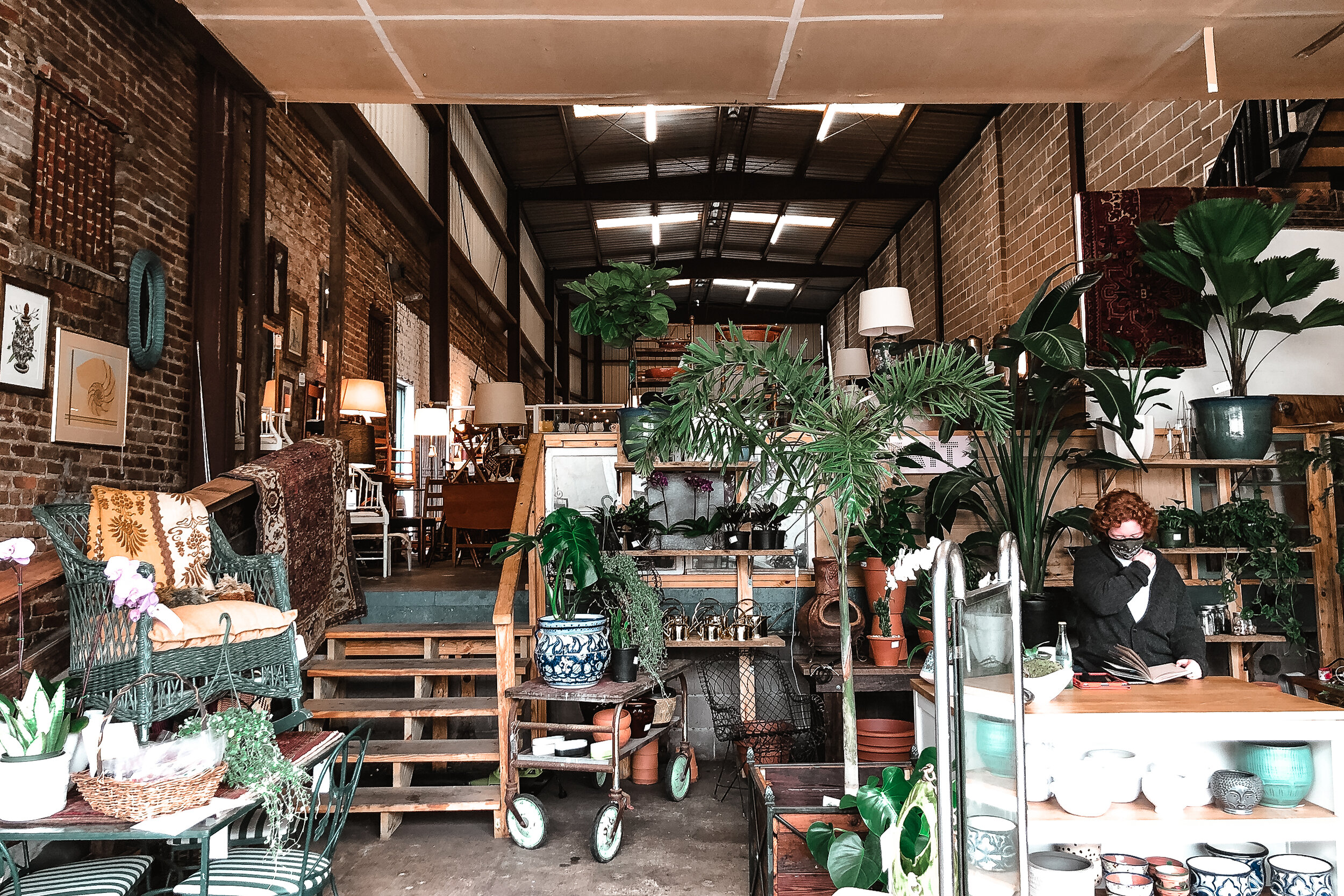
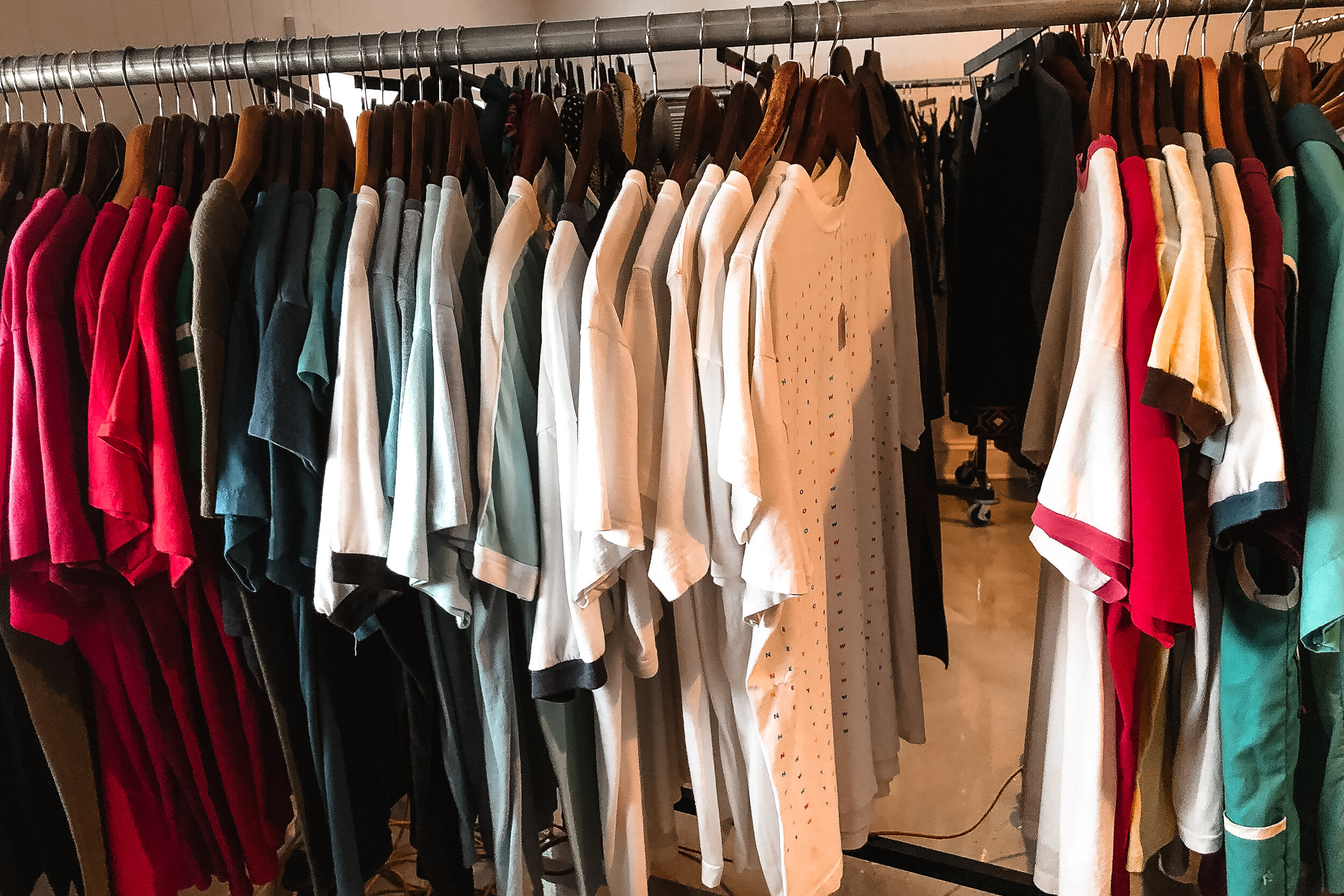
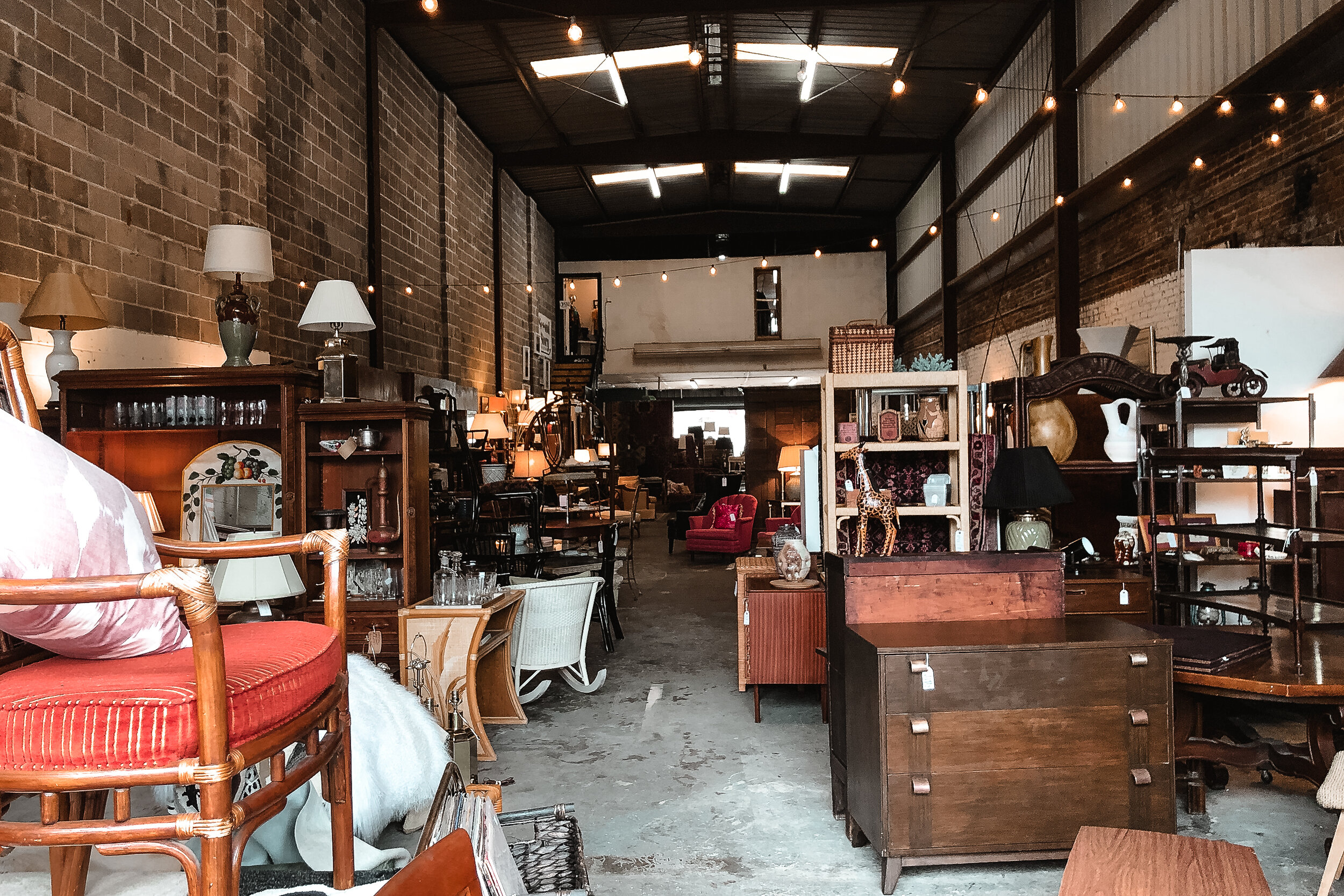

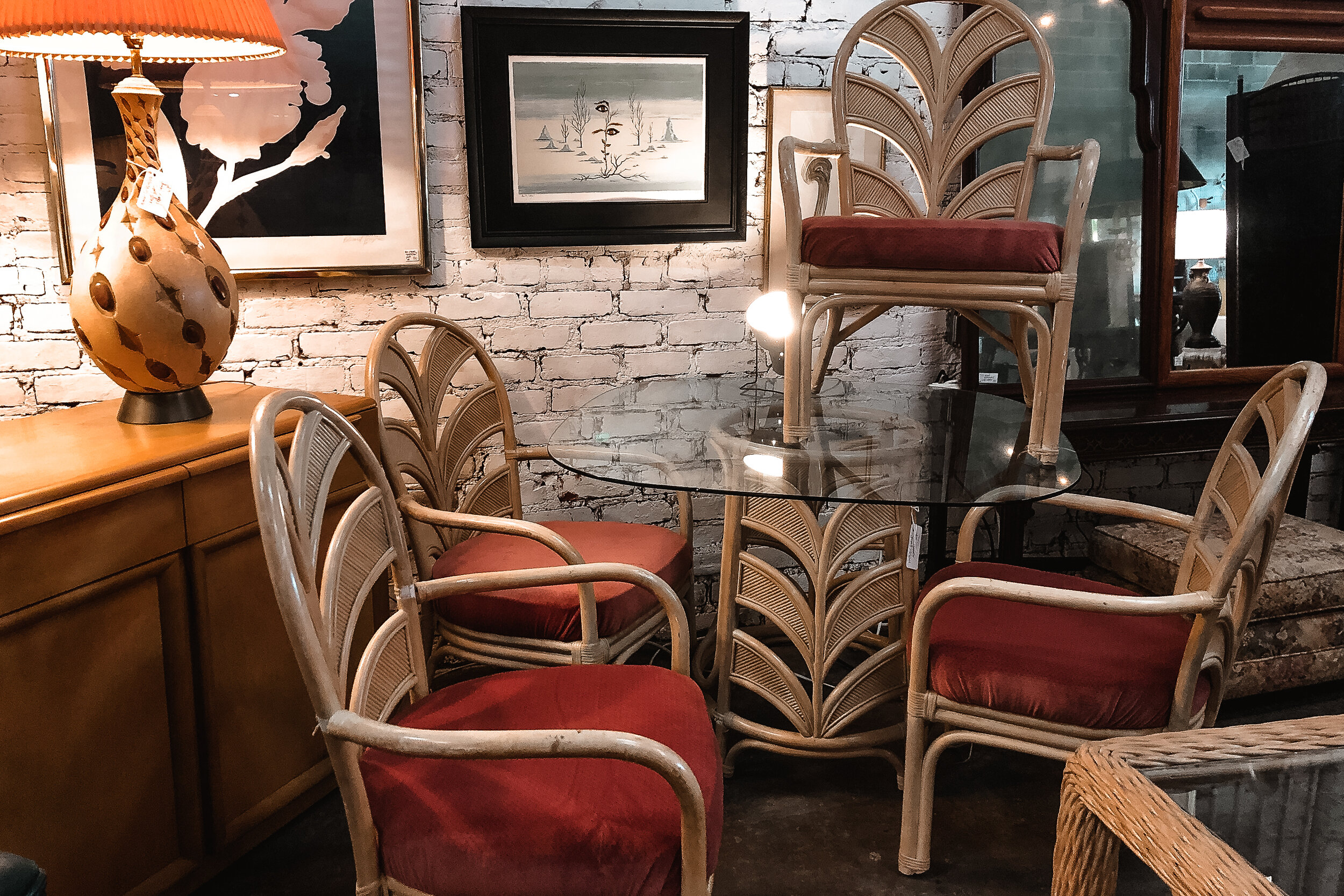

Shopping
Merchant House Collective. An antique warehouse with mid to late 20th century furniture, home-goods and accessories. There is a plant shop and an upstairs with vintage tees, clothing and jewelry.
Frenchman Street Market. A nightly market located on Frenchman Street where artists sell illustrations, sculptures, jewelry, decor and perform live music.
Second Line Art & Antiques. An antique market with old wooden furniture, vintage clothing and taxidermy insects. It’s courtyard also doubles as an artist’s market.
Magazine Antique Mall. A classic antique mall located on Magazine Street with dozens of booths filled with miscellaneous items and treasures. We found some unique cookware and dishes.
Voodoo Authentica. A tiny shop in the French Quarter with a large selection of voodoo dolls. It’s an educational place to learn more about the modern practice of Voodoo.
French Market. A market under a series of sheds in the French Quarter with food stalls, flea market tables and souvenir vendors. Though nothing like a traditional French Market, we enjoyed walking through it after ordering beignets from the original Cafe du Monde.
Taste Everything!
If you come to New Orleans for one thing, come for the cuisine! There are so many dishes and drinks unique to this city alone. These are some of favorites:
Crawfish Mac n Cheese. A Cajun classic made with crawfish tails, rich gooey cheese and macaroni noodles.
Shrimp and Grits. A classic breakfast dish with creamy buttery grits and tender Gulf shrimp.
Po’boy. A classic Louisiana sandwich made on crispy bun with a fluffy center. It always has a protein, usually seafood, and comes “fully dressed” with lettuce, tomato, a pickle and mayo.
Fried Catfish. A slightly gamey and flaky white fish. We often ordered it on a Po’boy.
Gumbo. A traditional soup to New Orleans often eaten from October through March. It’s a savory melting pot of flavors and cultures having influences from the Indigenous Choctaw, West Africans, French and Spanish.
Chargrilled Oysters. Gulf Coast oysters that have been grilled with herbs and cheese.
The Sazerac. A sipping cocktail made from whiskey, cognac and absinthe usually garnished with a lemon peel.
The Hurricane. A sweet, fruity, tropical rum drink served in a tall curved glass.
Hand Grenade. A cocktail served on Bourbon St. by a few specific bars. It’s a very sweet drink served in a tall neon green plastic container with the shape of a grenade at the bottom. Basically a hangover waiting to happen…enjoy!
Restaurants
Commander's Palace. Commander’s is an unmistakable teal and white wooden restaurant located across the street from Lafayette Cemetery No. 1. It’s a family run business offering the best of high-end Creole cuisine in New Orleans. We tried the slow cooked gumbo, pecan crusted gulf fish covered in lump crab and a version of the crawfish linguini. For dessert, the bread pudding soufflé. Be sure to make a reservation and come dressed up.
Between dishes, the owner sat down with us to chat. She said “we go to the same church.” A discrete Southern way of identifying with other LGBTQ+ people. Needless to say, we felt very welcomed and even shared a dance in the courtyard towards the end of the evening.
Jacques-Imos. It’s hard to choose a favorite restaurant in New Orleans but this one is up there! Try the snail butter corn bread, Creole Bouillabaisse, Crawfish Étouffée and bread pudding. Make a reservation in advance and come ready to eat!
The Rum House. Located on Magazine St. and a gem for á la carte tacos. We almost hired the restaurant to cater our wedding.
Killer Po’Boys. The best spot in the French Quarter for po’boys. In addition to the classic seafood options, they offer vegan Po’boys like roasted cauliflower or sweet potato.
Effervescence. Relax by the outdoor fountain with a glass of Champagne, oysters and caviar served with a mother of pearl spoon.
Pechê. Recommended to us by a few locals, this restaurant in the offers Cajun and Gulf style seafood.
Green Goddess. A vegan restaurant in a romantic string lit alley in the French Quarter. It’s a nice reprieve from some of the craziness.
Basin Seafood & Spirits. Come for the Po’boys and Chargrilled Oysters.
Juan’s Flying Burrito. If you’re on Magazine St. and craving a burrito, Juan’s is the place to visit. They have two locations. One in Uptown and another in the Lower Garden District.
Cafes
The Vintage. A coffee shop with artisanal beignets by day and bar by night. We ordered a flight of 3, the matcha, pumpkin and raspberry.
Café Beignet. Another popular chain for beignets. Visit the Bourbon St. location for a beignet, cup of chicory and of course live jazz.
French Truck Coffee. A local chain cafe with amazing coffee, biscuit sandwiches, breakfast toasts and croissants. If it’s fully brewed, try the Oji coffee. It’s Japanese method of slow brewing 1 drop at a time over 24 hours.
Bear Cat Cafe. A breakfast and brunch spot with cajun meals, vegan options and fresh kombucha. We ordered the crab scramble and vegan biscuits + gravy. Make sure to try the breakfast potatoes.
City Donuts & Cafe. One of the best finds in the city. Come here for a donut breakfast sandwich! Literally egg and cheese sandwiched between two regular glazed donuts.
Orleans Coffee Espresso Bar. A great spot to relax with a coffee or cafe au lait.
Bars
Delachaise Wine Bar. One of our favorite spots in town. Come here for a glass of wine and to watch the St. Charles street cars pass by.
QiQi. A LGBTQ+ dive bar with inexpensive drinks, a laid back vibe and outdoor seating.
Hot Tin. A rooftop bar at the Pontchartrain Hotel with great cocktails and views of NoLa.
The Elysian Bar. A former church turned into a restaurant and cocktail bar. The nave of the church is now the main dining room with multiple parlors located throughout the rectory. It’s a funky and unique experience!
Old Absinthe House. A 200+ year old absinthe bar on Bourbon St. offering traditional absinthe drip cocktails. It stands out from the neon lit cocktail bars lining the street. The walls are covered in notes and business cards from generations of customers,
Good Friends Bar. One of the many gay bars in the French Quarter but also one of our favorites. The 2 floor bar is a hub for the gay community, locals and tourists.
Café Lafitte in Exile. Considered the oldest gay bar in the US. It’s a fun spot to grab a drink on Bourbon St.
Mini Excursions
Outside of New Orleans, there are a number of mini excursions to go on. We booked ours with Cajun Encounters, a local tour company.
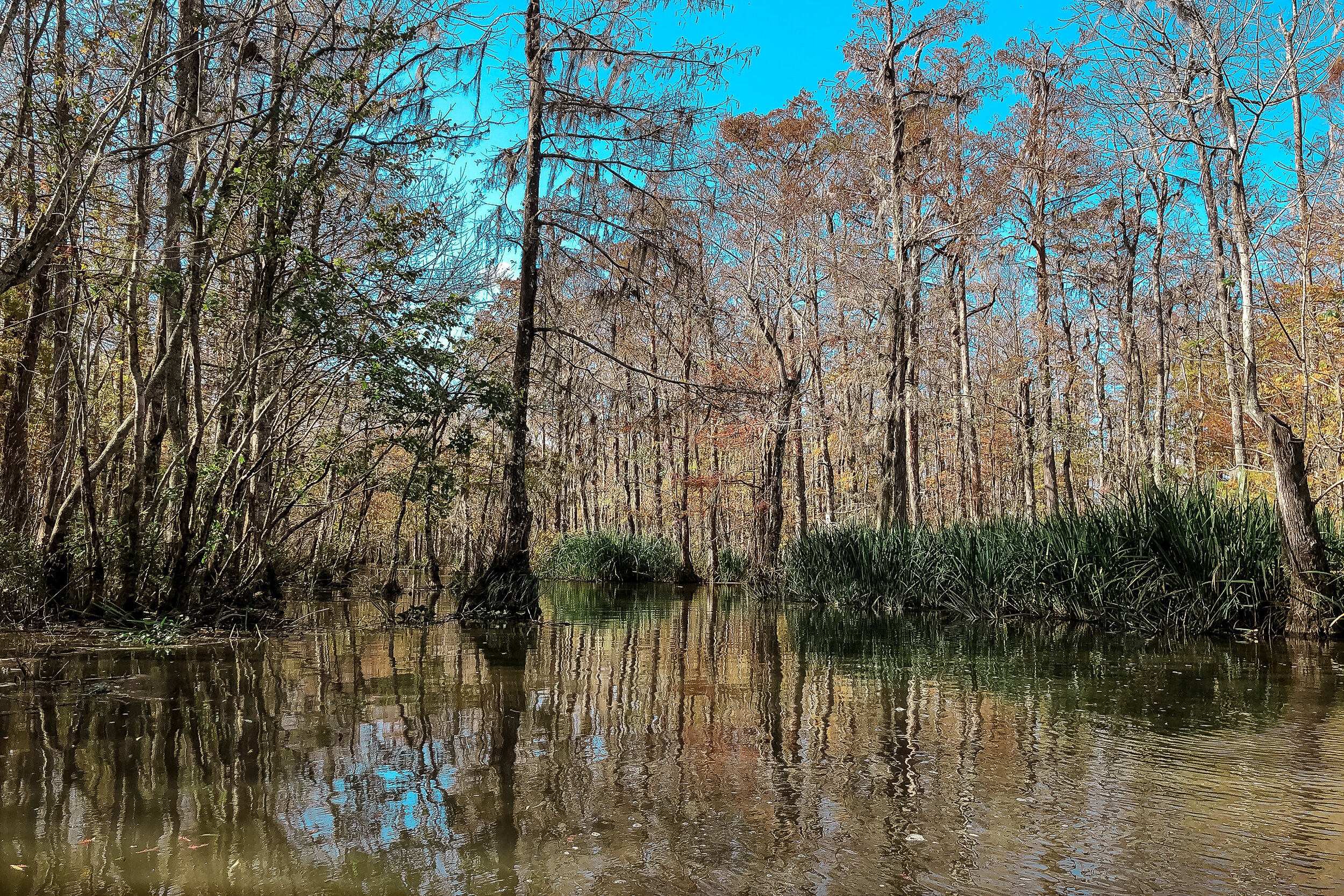
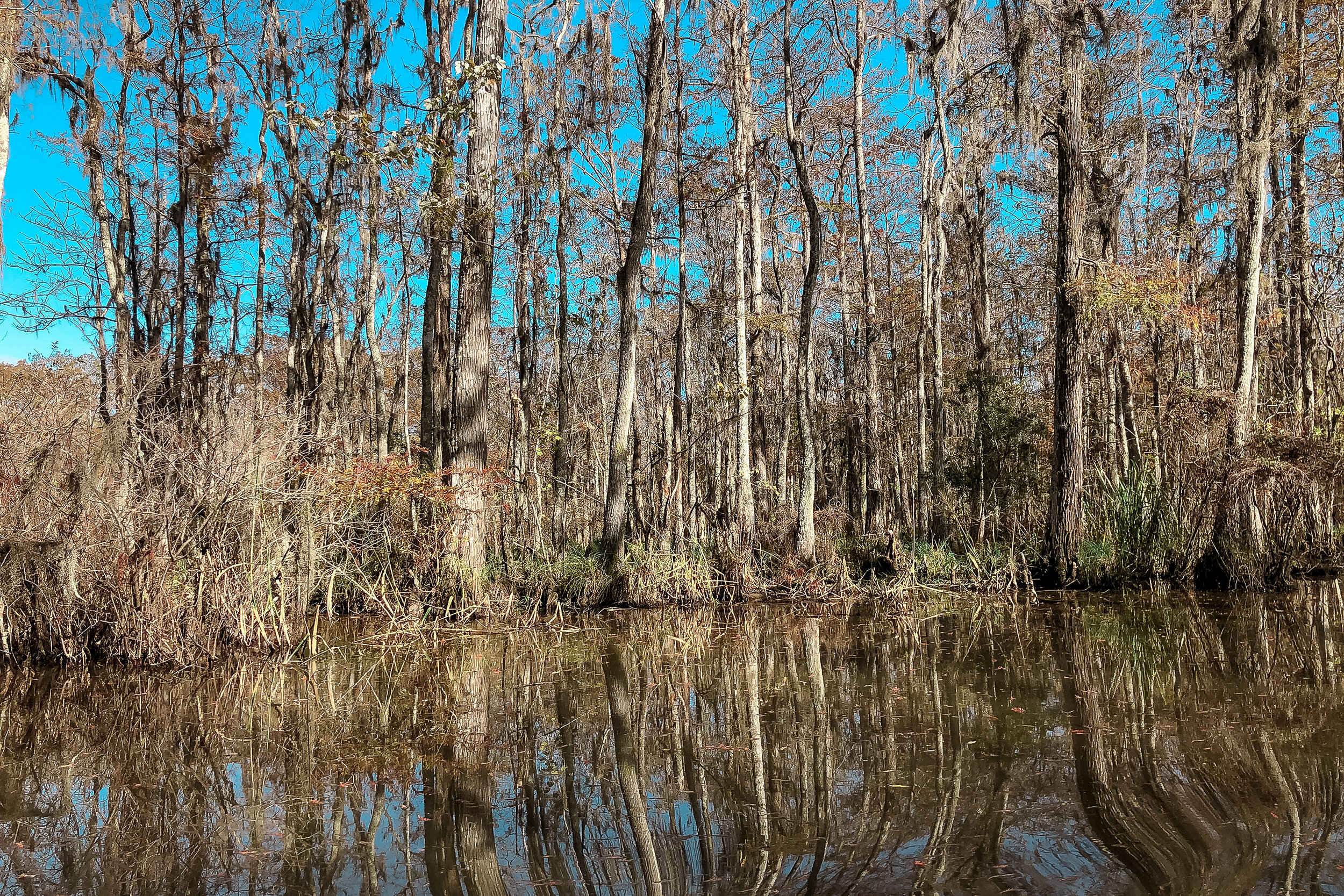
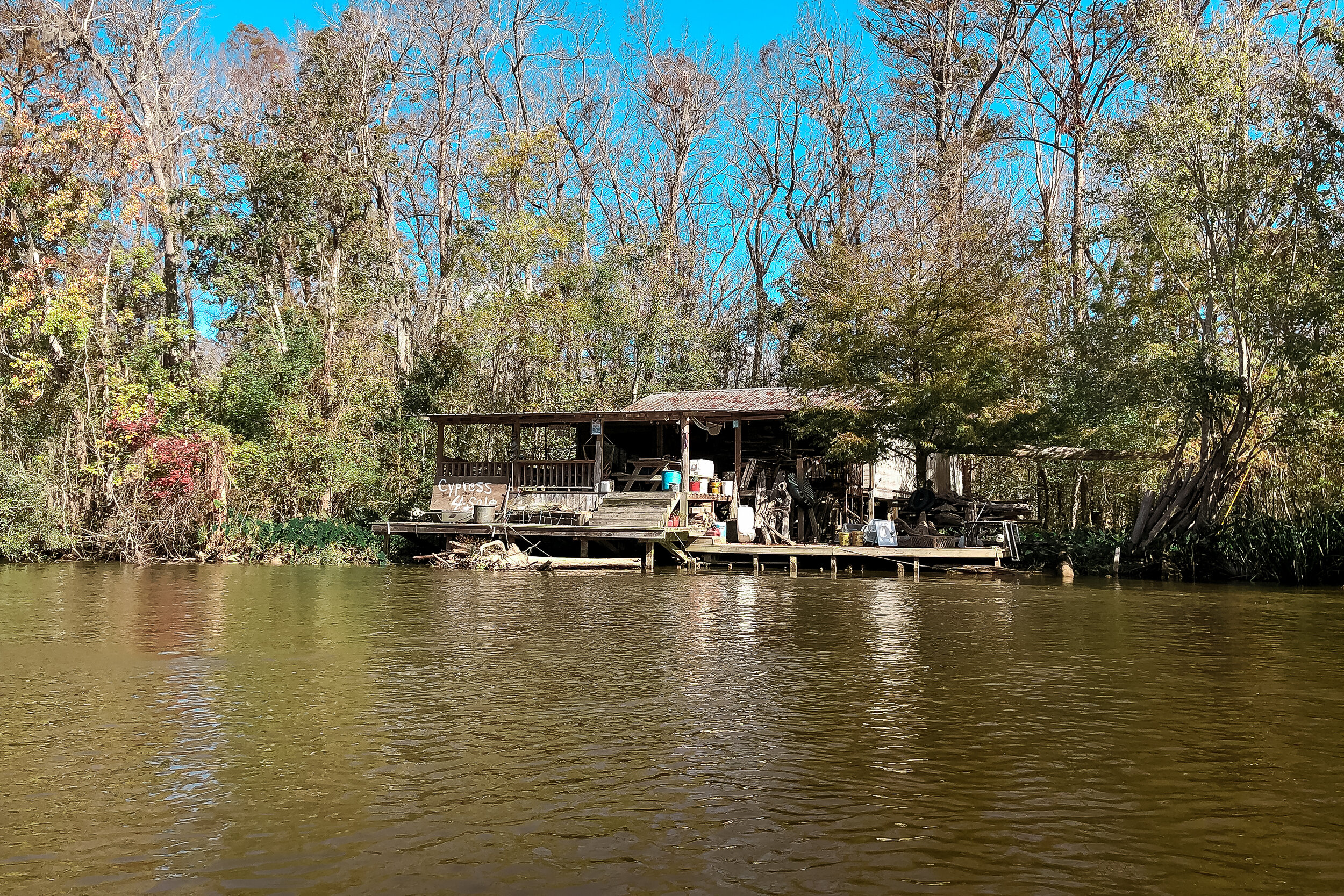

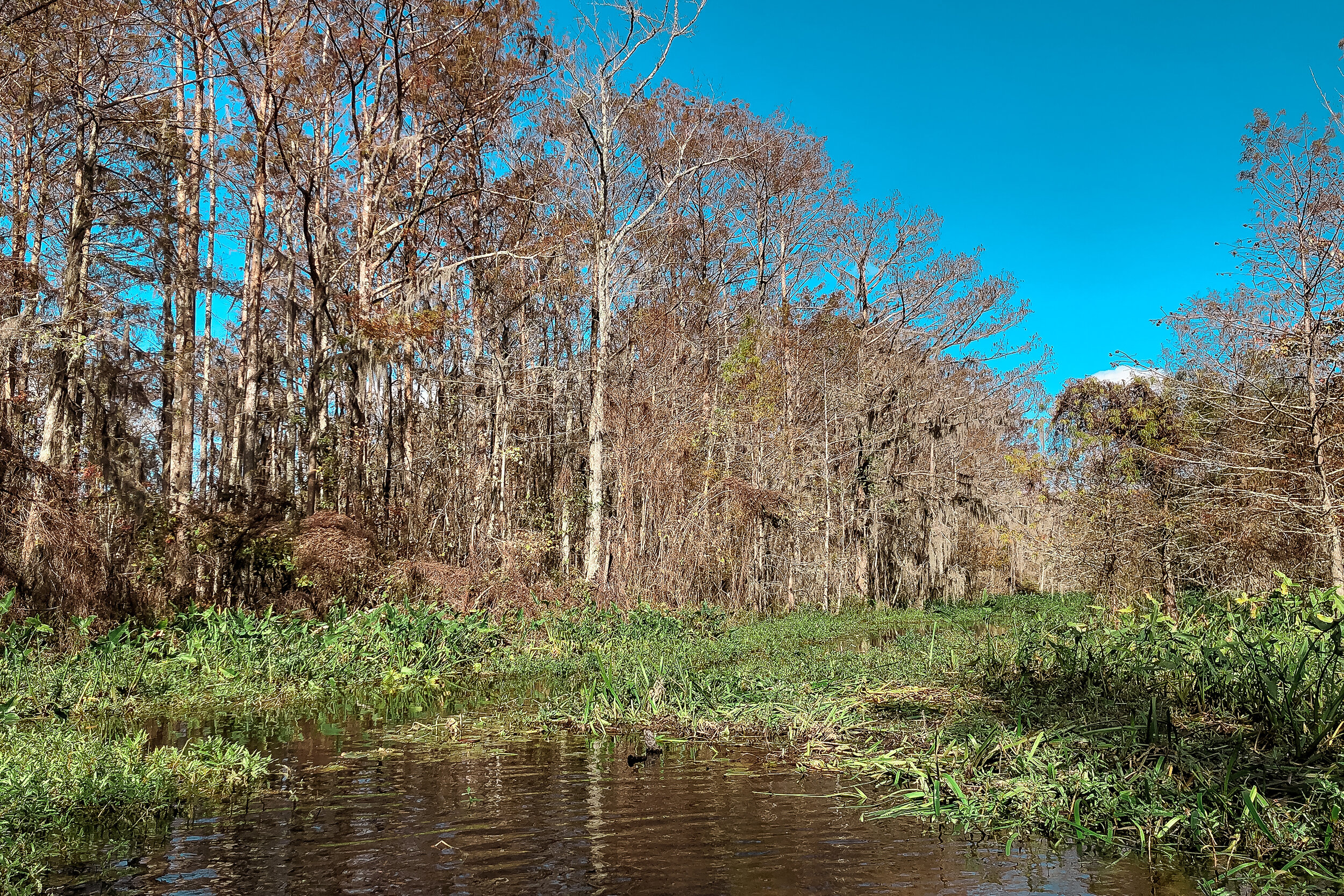
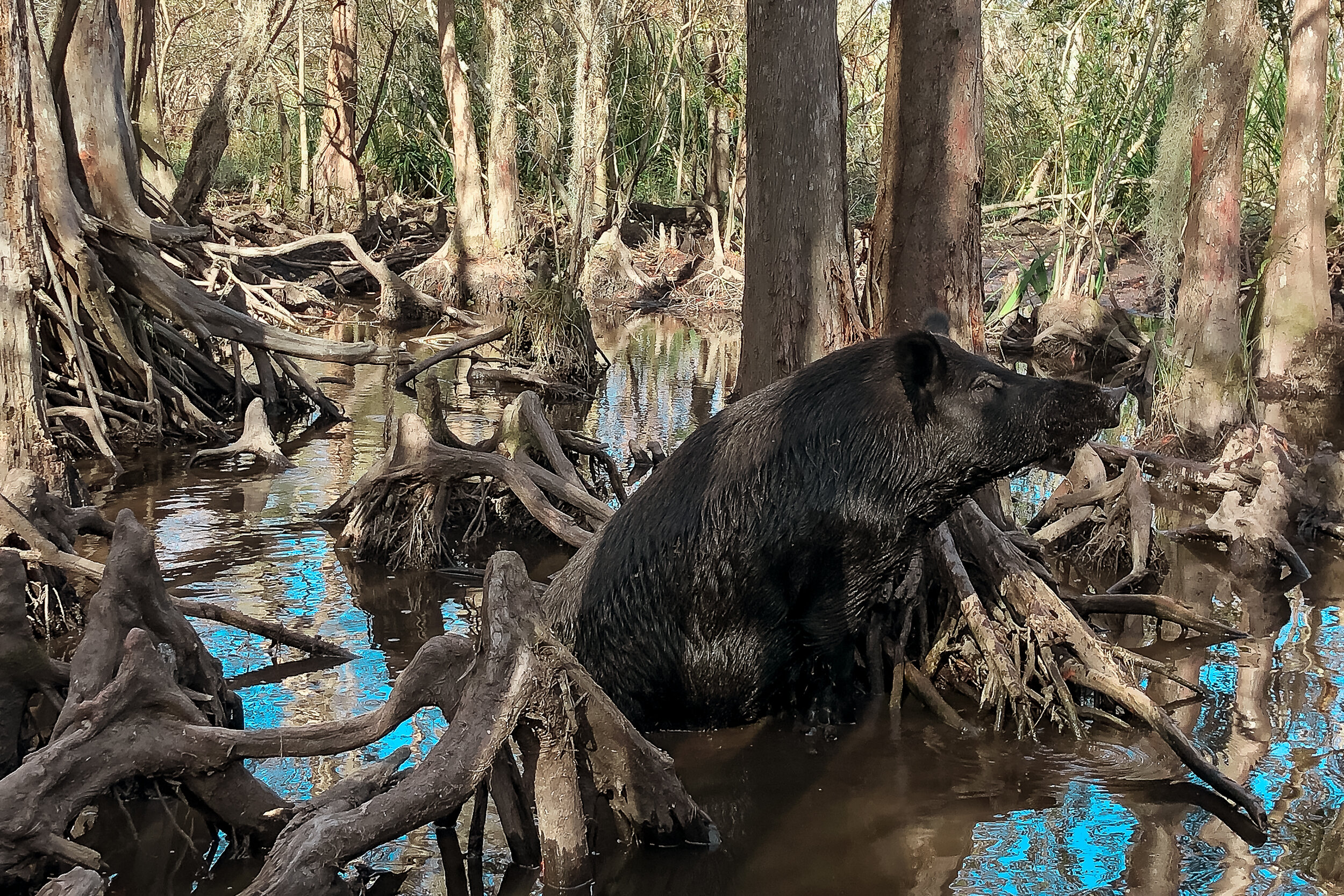
Swamp Tour. New Orleans is surrounded by swamps that have had a large influence on they city’s architecture, industry and cuisine. They are also natural buffers that offer protection from hurricanes. We visited the Honey Island Swamp where we saw wild bores, alligators, cypress trees and Spanish moss while boating through the bayous and past swamp houses.
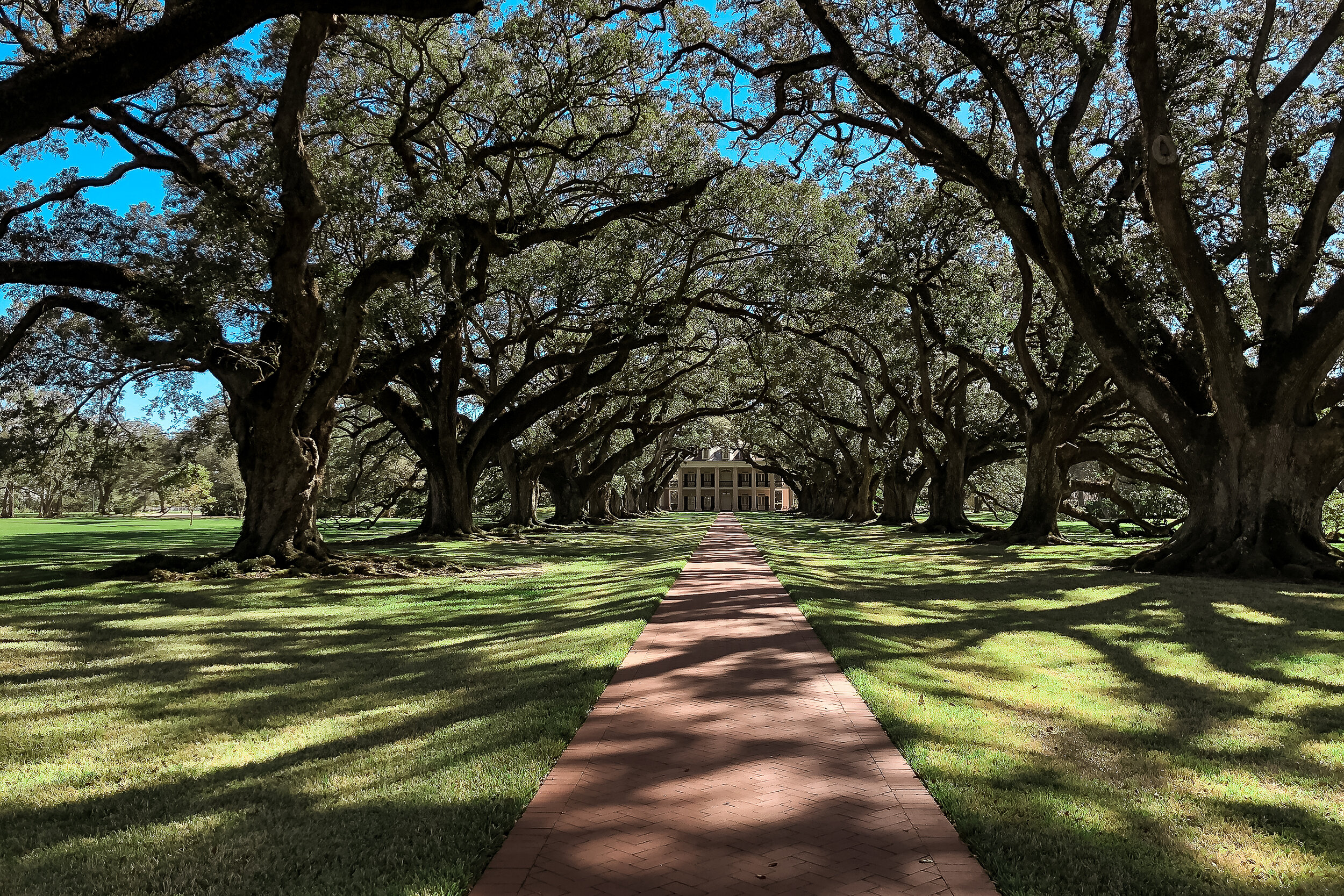
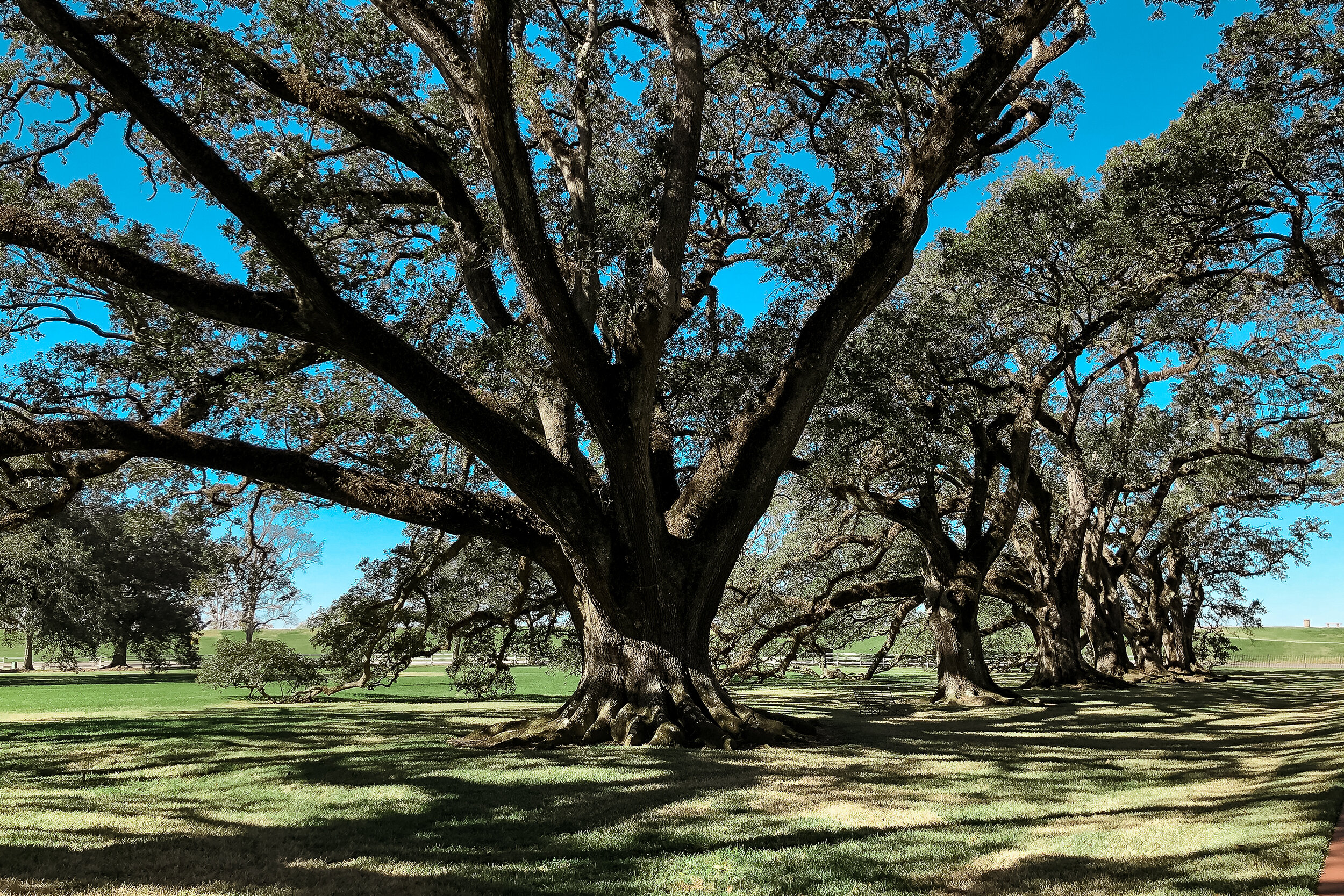
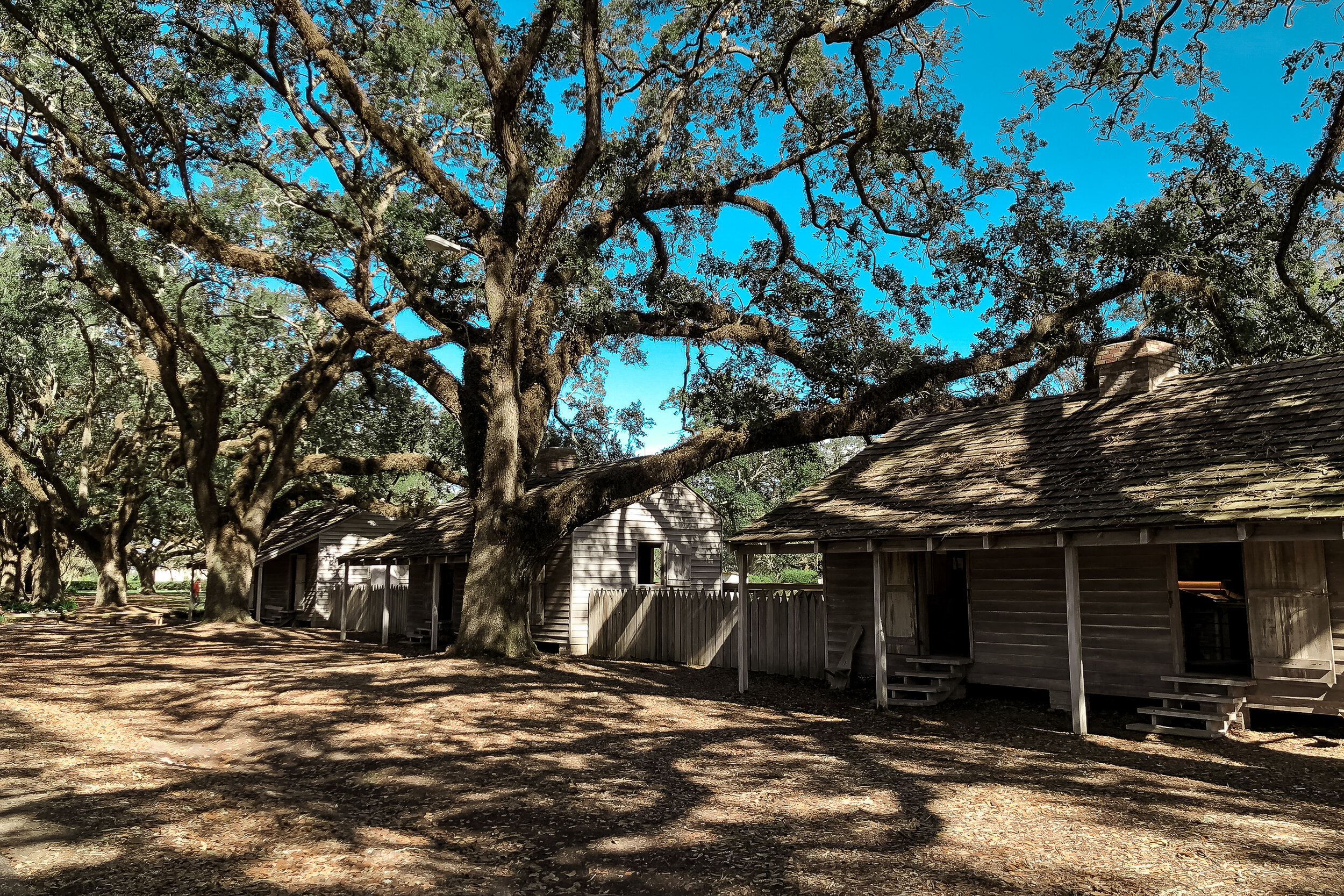
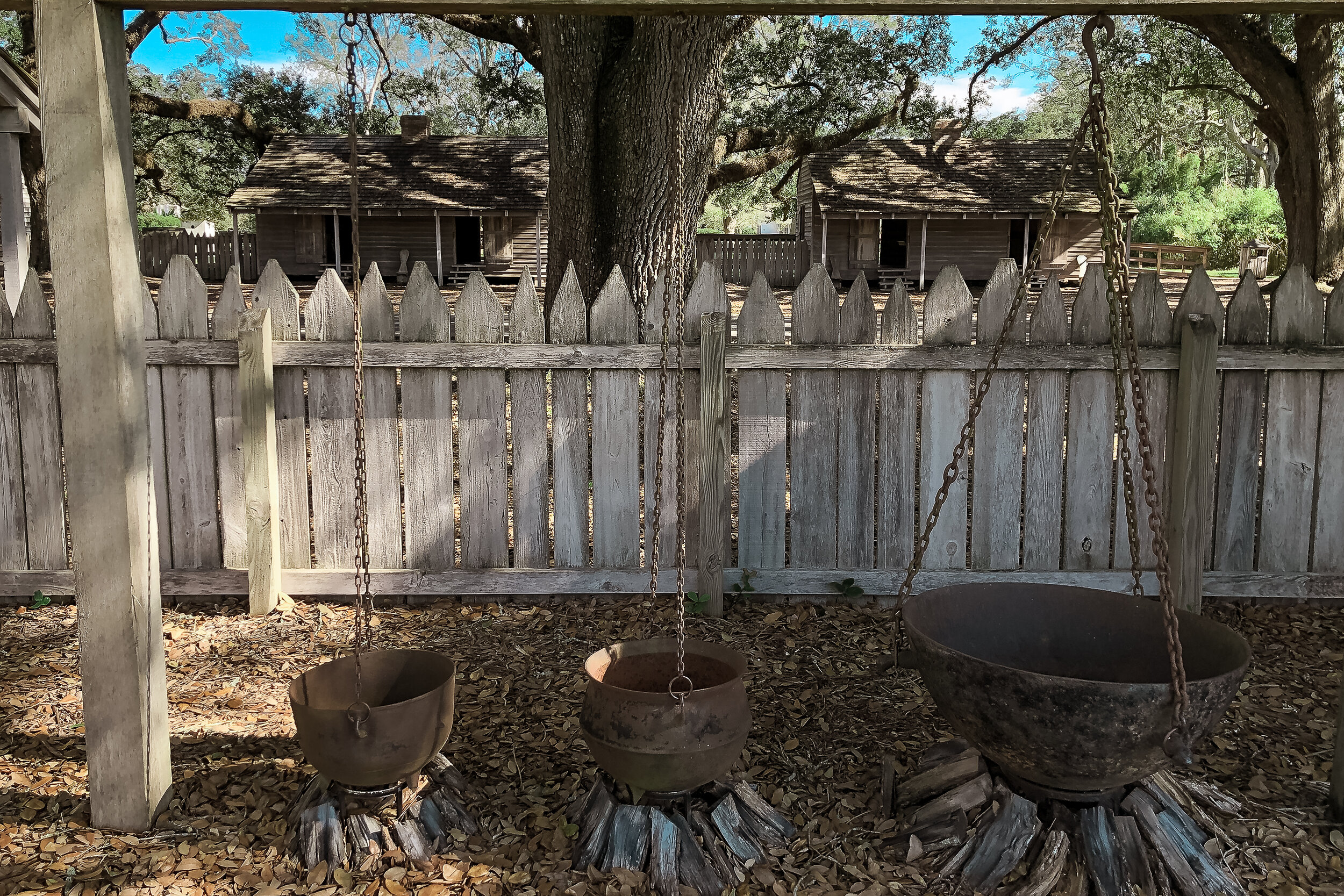
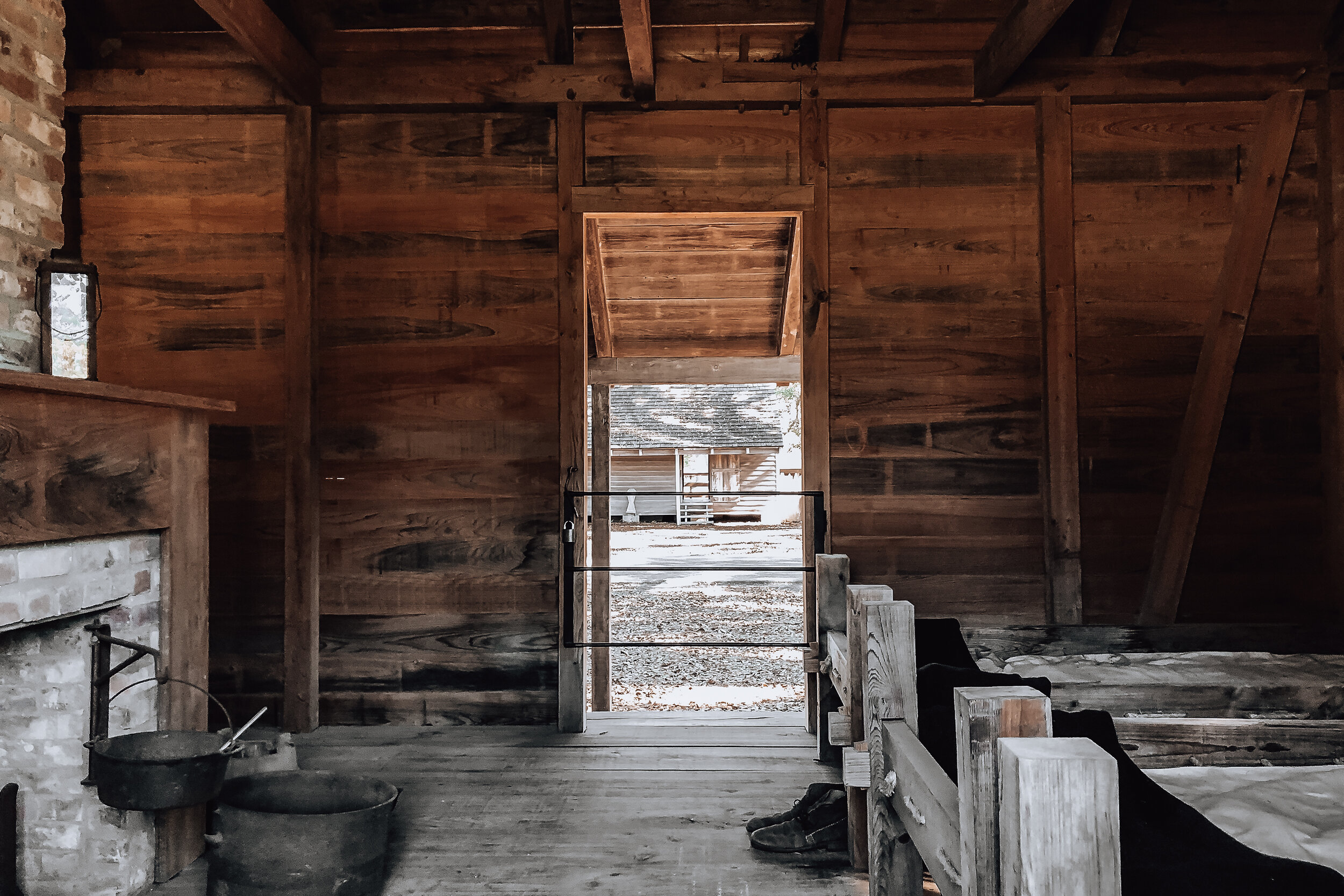
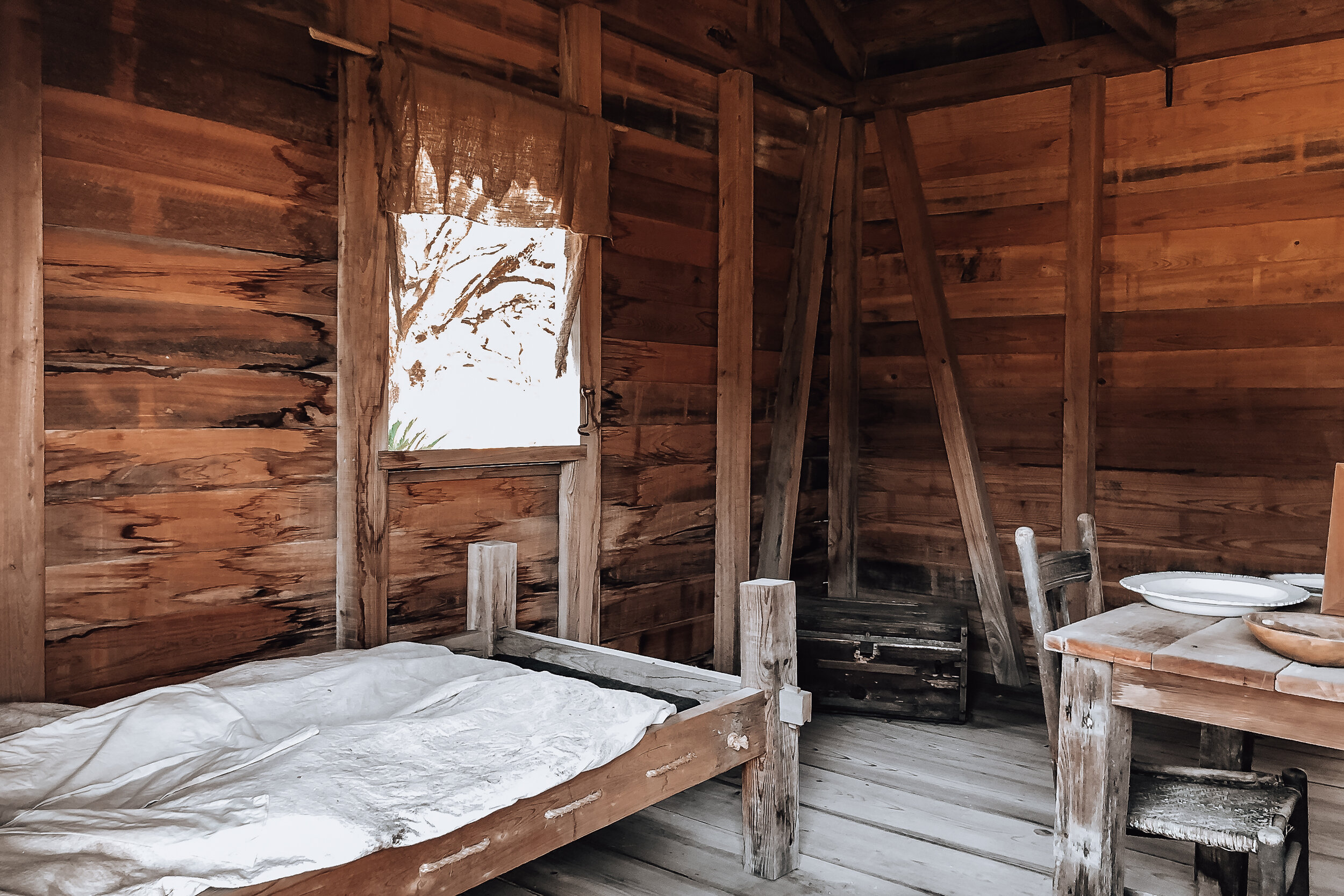
Plantation Tours. Educate yourself on the history of slavery. New Orleans’ past is one we chose to learn more about while visiting. About an hour up-river are a number of plantations offering tours. We visited the Oak Alley Plantation, named for its row of 300 year old oak trees. Here, we learned about the lives of the enslaved people that were forced to labor here, the conditions they lived in and the African influences they brought with them. There is also a great restaurant here. Order a Po’boys and a flight of Mint Juleps!
Pro tip: Book a tour or drive here yourself. Uber and Lyft don’t drive to this area.
Getting Around
Take the Street Car. There are 4 lines that branch out from Canal St in the city’s center to different neighborhoods. Streetcars are the easiest and most affordable way to get around town.
Download RTAGoMobile2.0 app to buy tickets.
Single ride pass costs $1.25
1 Day pass costs $3
3 Day pass costs $9
5 Day pass costs $15
On Foot. Grab a to-go cocktail and start walking. The city is so photogenic and great for exploring on foot.
Lyft or Uber. Overall, New Orleans is pretty easy and affordable to get around.
$10 for short distances
$10-$20 to get across town
$30 to/from the airport to Canal St.
Good to Know
NOLA is short for New Orleans, Louisiana
Dress casually chic to semi formal for higher end restaurants.
Riverside refers to the south side or area along the Mississippi.
Lakeside refers to the north side or area along Lake Pontchartrain
Watch out for scam artists on Bourbon St. If any ones bets they can tell you where you got your shoes…tell them you’ve got them on Bourbon St.
Next Time in New Orleans
With our wedding approaching, we will soon be back in New Orleans. We can’t wait to share our amazing experiences in this city with our family and friends!
We hope to return for Mardi Gras and Jazz Fest.
Tour St. Louis Cemetery No. 1 and Lafayette Cemetery No. 1 after their repairs are complete.
We would love to go sailing on Lake Pontchartrain.
Eat and drink more! Two places we wanted to try are Bar Marilou in the Warehouse District and Elizabeth’s in By Water.
Eastern Puerto Rico
Puerto Rico is known as La Isla del Encanto, which translates to The Island of Enchantment. The island is home to some of the most natural landscapes.
La Isla del Encanto
Puerto Rico is known as La Isla del Encanto, which translates to The Island of Enchantment. The island is home to some of the most natural landscapes and wildlife; including Caribbean beaches, bioluminescent bays, rainforests and waterfalls. Going East from San Juan, we’ve hiked to the peak of El Yunque, kayaked though mangrove forests in Las Croabas and snorkeled with sea turtles in Culebra.
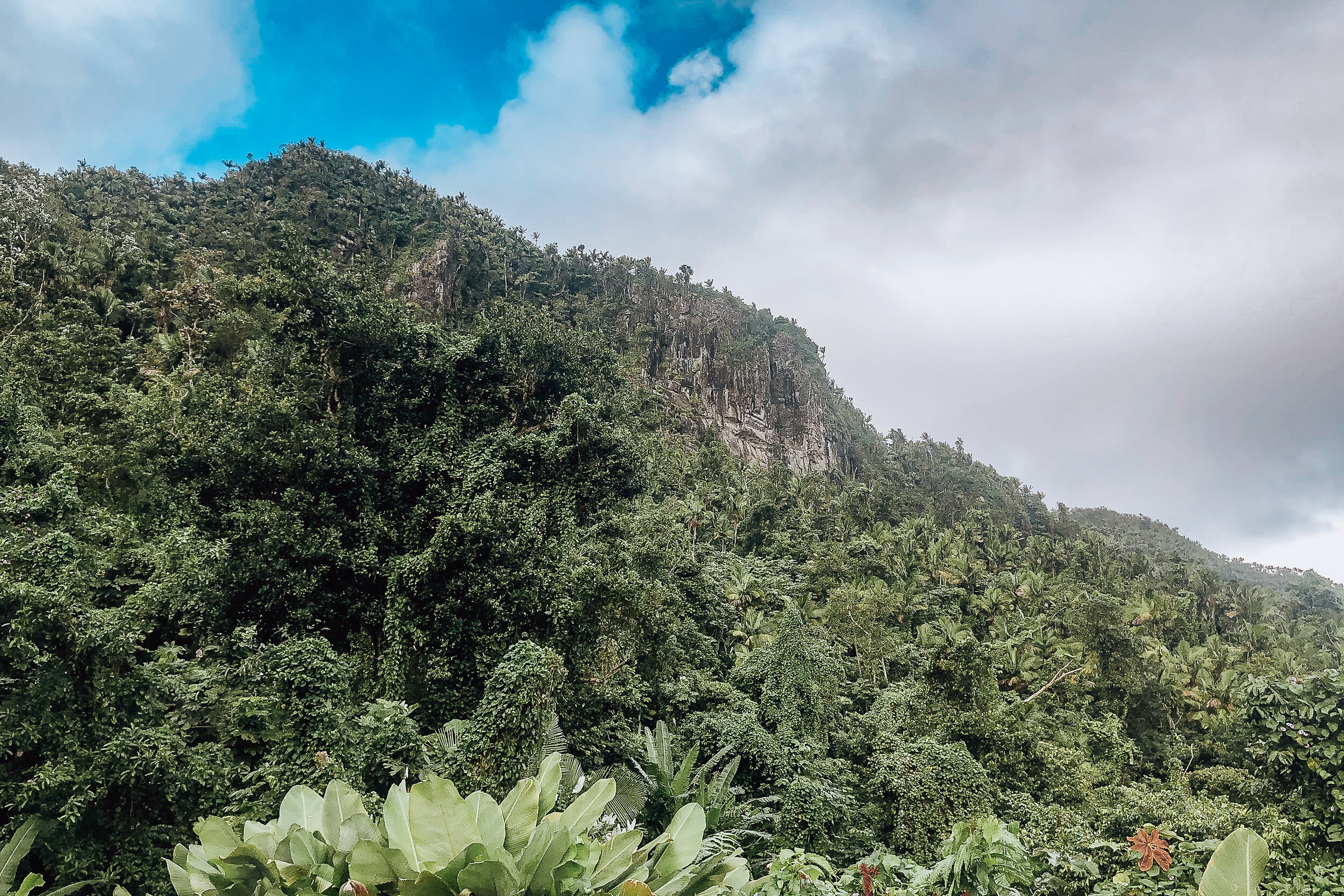
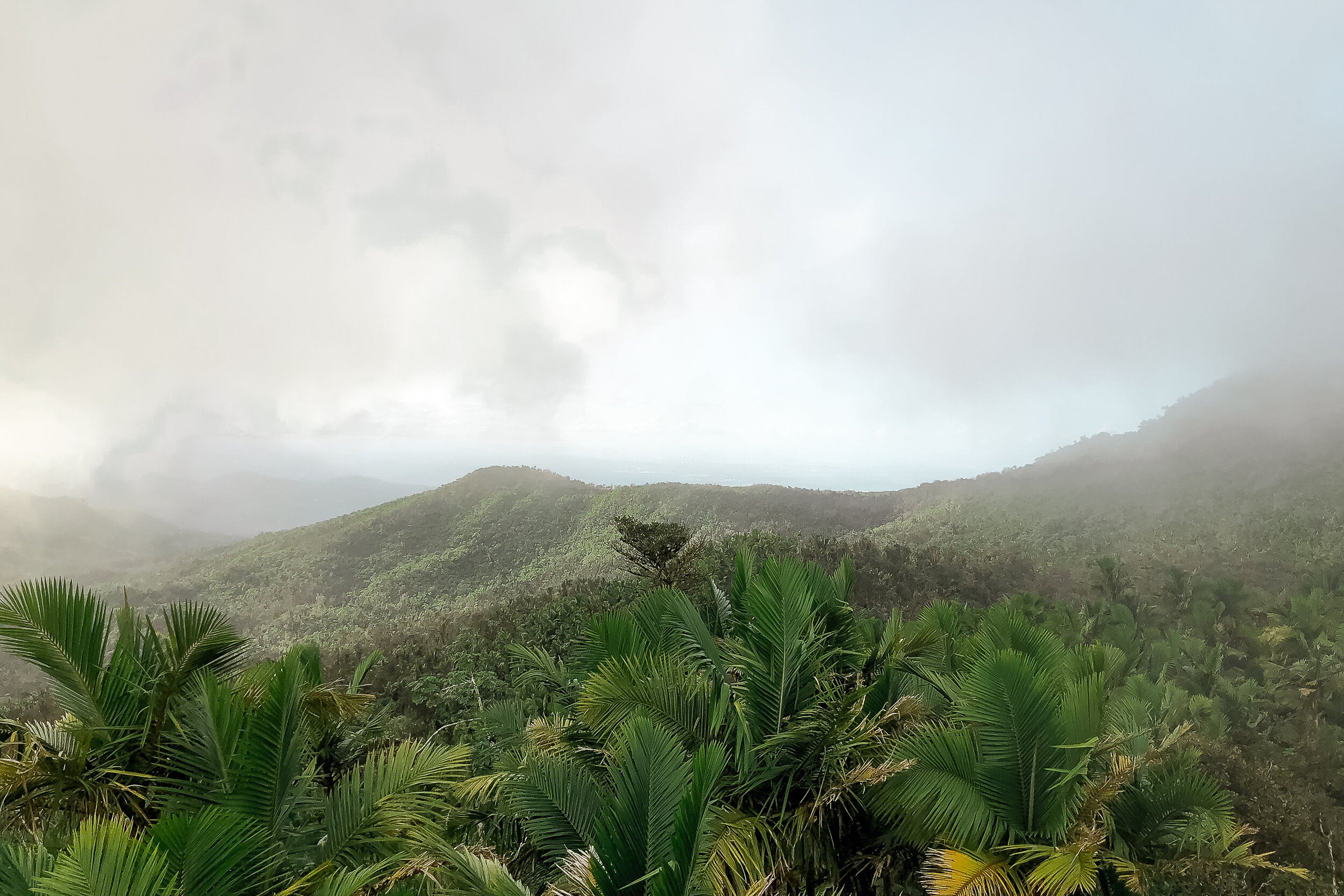

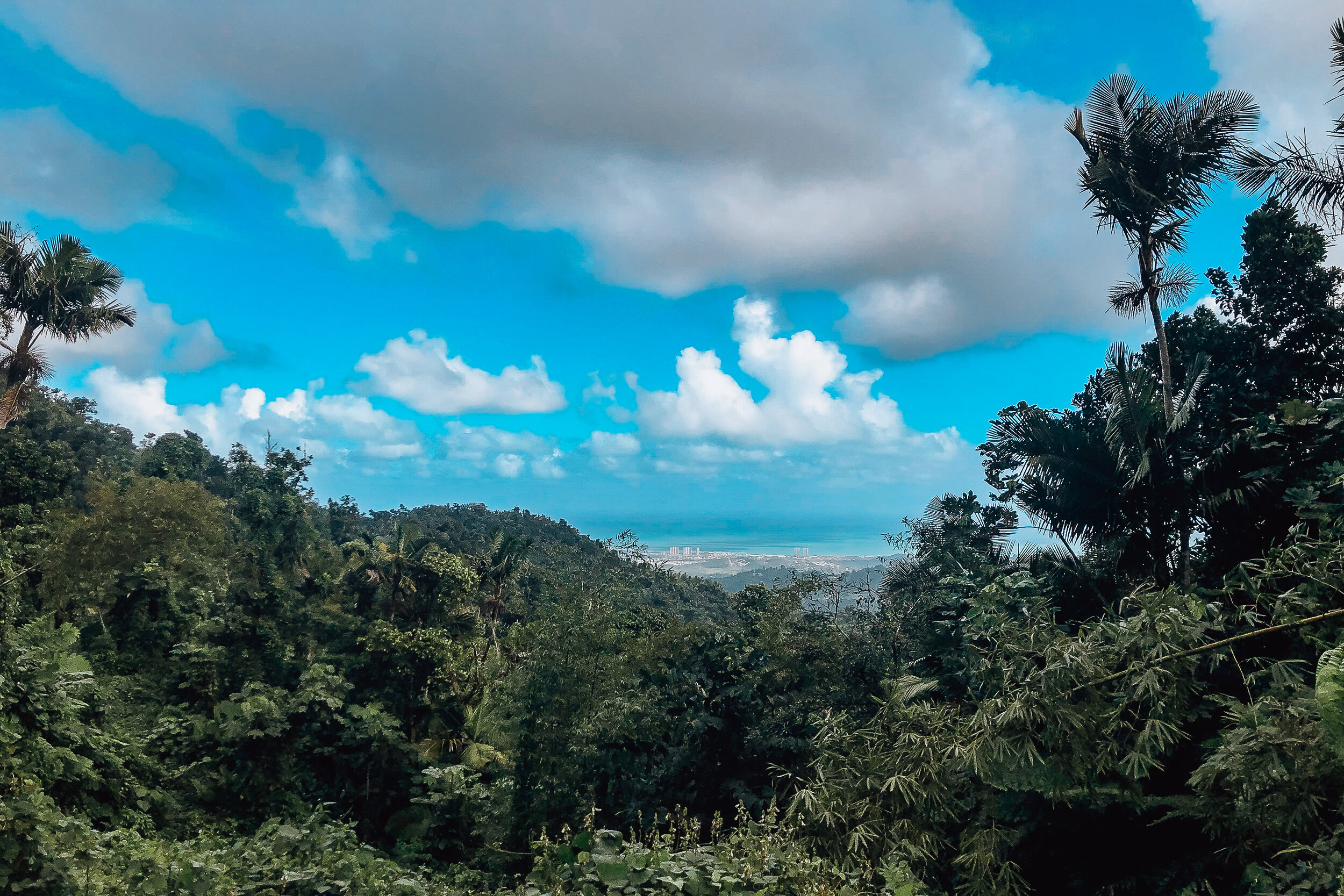
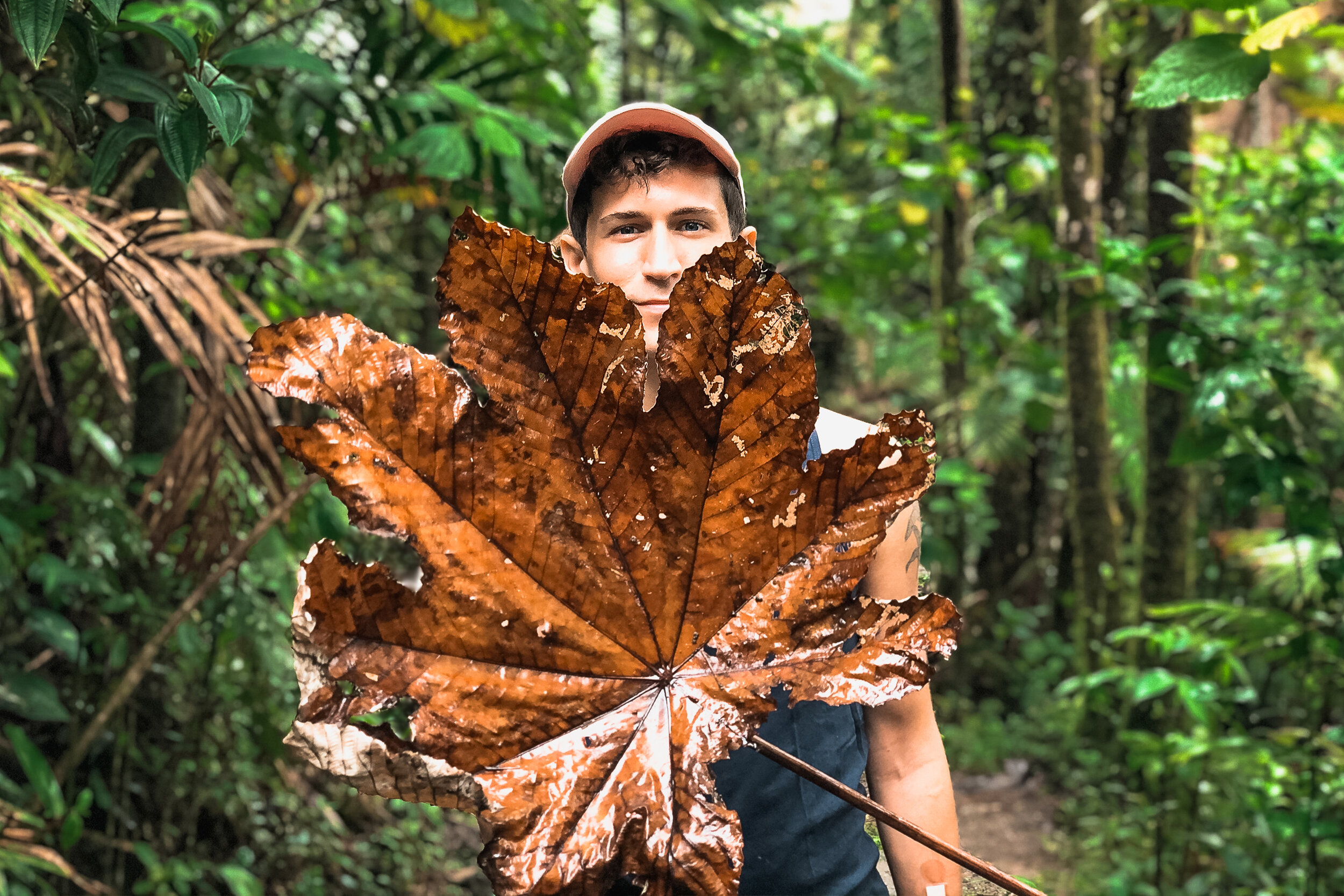
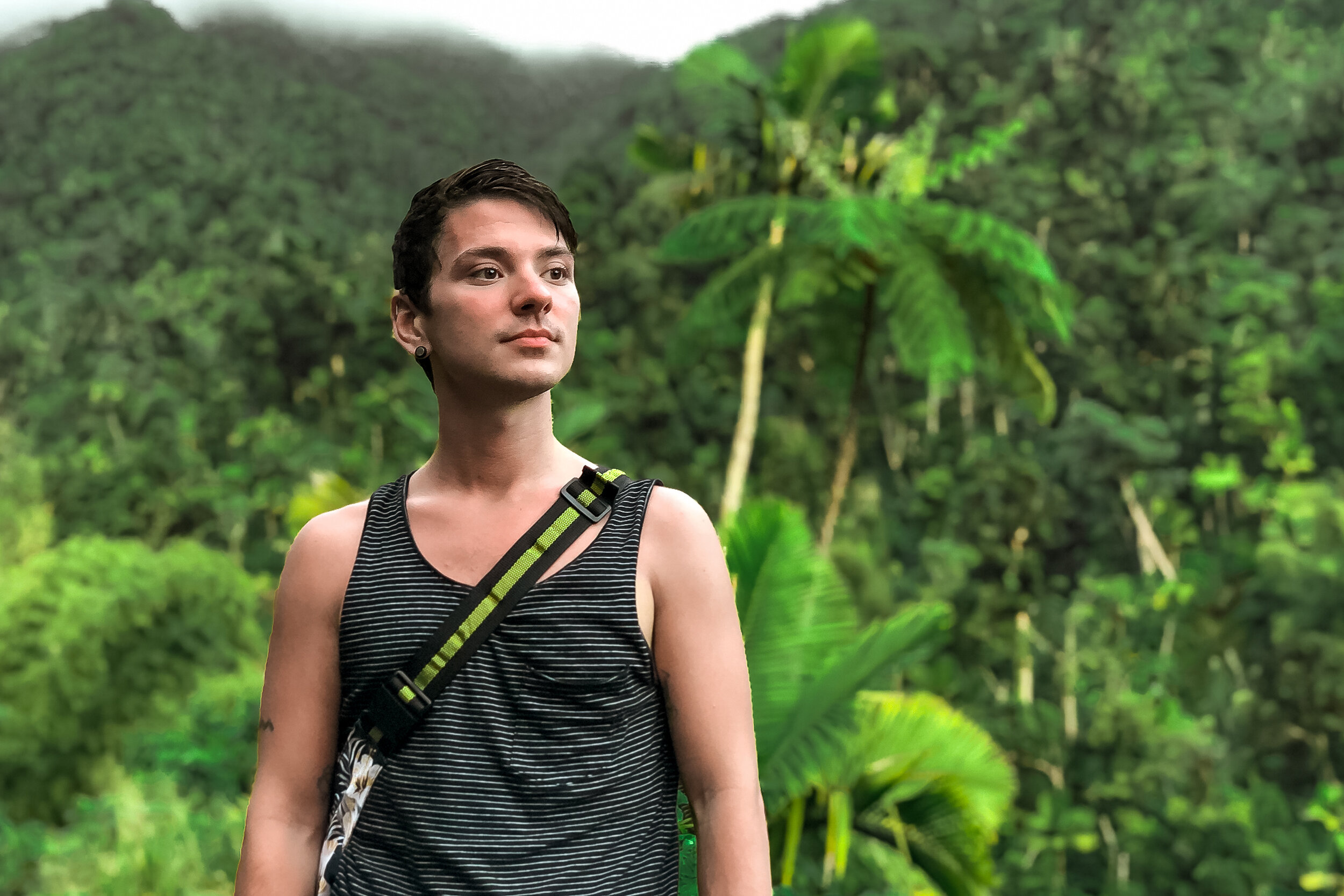
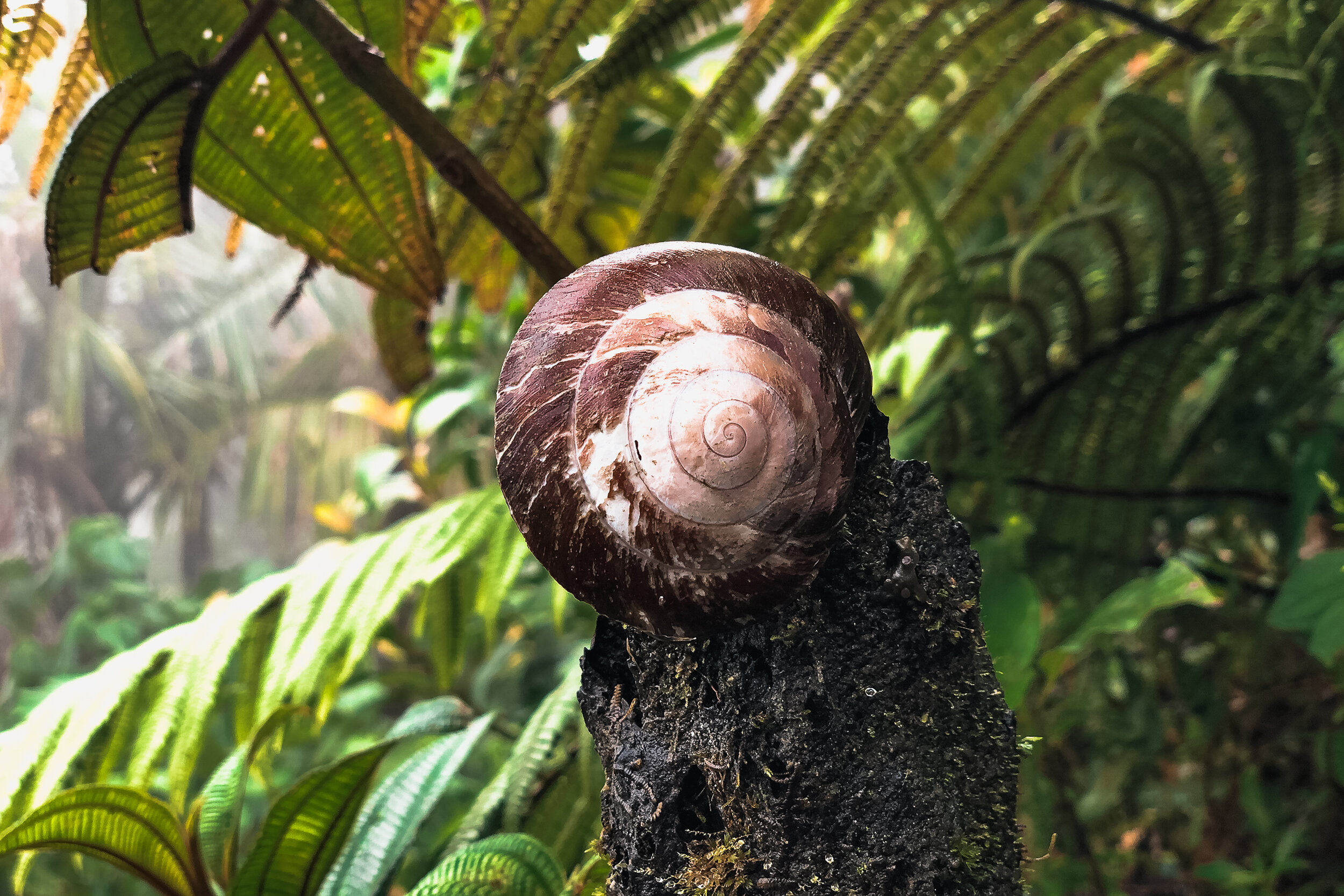
El Yunque National Forest
El Yunque is Puerto Rico’s only rainforest. The landscape is full of lush tropical vegetation, waterfalls with natural pools, hiking trails, lookout towers, tree snails and frogs. Here are a list of sights and trails in consecutive order past El Portal Visitor Center.


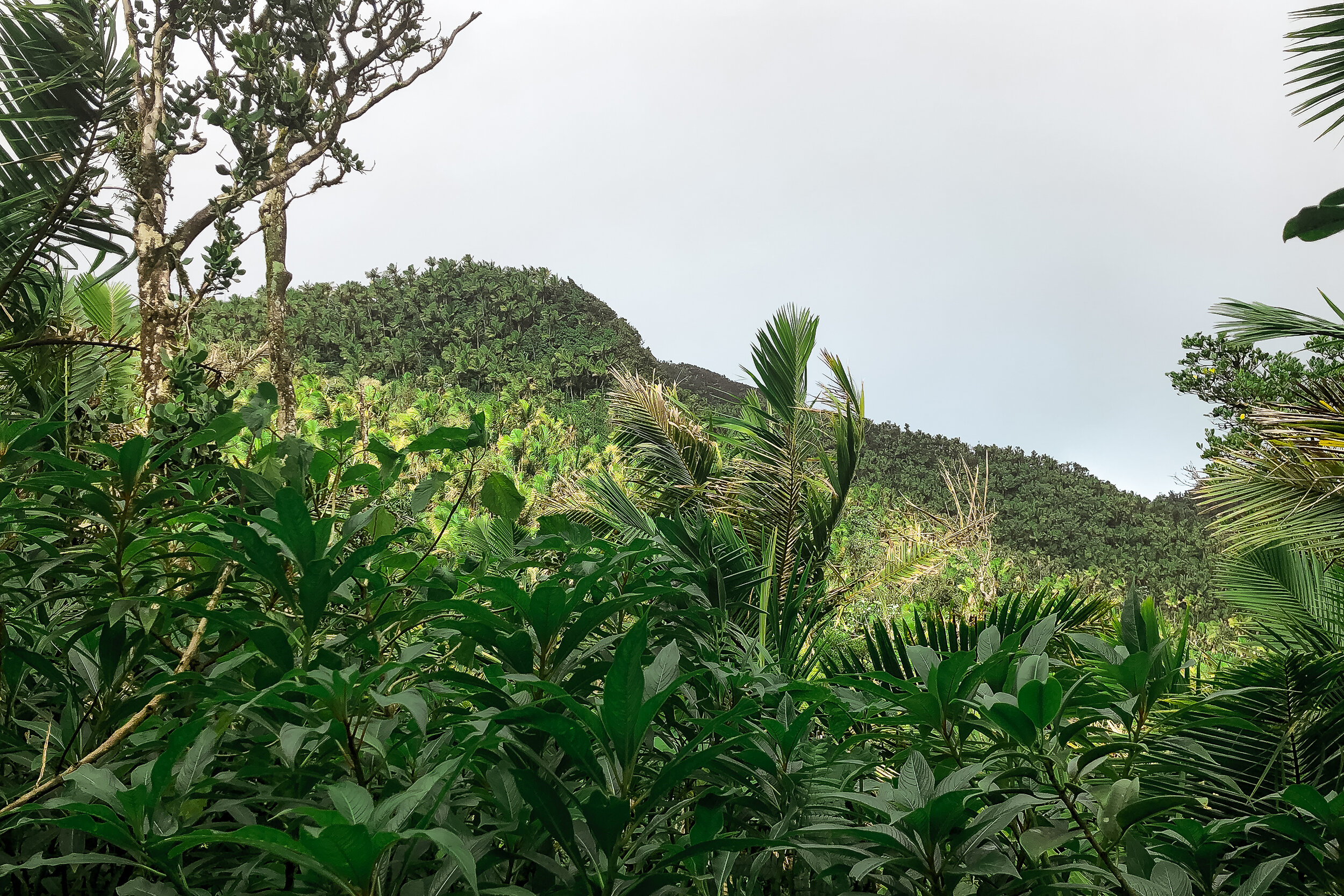




La Coca Waterfall. An 85ft roadside waterfall shortly after entering El Yunque.
Yokahú Tower. An observation tower less than 1km past La Coca Waterfall.
Juan Diego Falls. Down the road from Yokahú Tower is series of waterfalls with natural pools for swimming. The falls are reachable via a short trail from the road.
Sierra Palm Picnic Area. The only restaurant in El Yunque with great lunch options and refreshing drinks.
Mt Britton Trail. A thin paved and stone laid trail though the rainforest leading to Torre Mt Britton. It takes about 45 minutes from the trailhead to reach the peak.
Torre Mt Britton. An observation tower at El Yunque’s second highest peak with cool breezes, rolling clouds and sweeping views of the Caribbean and Atlantic coasts.
Mt Britton Spur Trail. Connects the Mt Britton Trail to El Yunque Trail just before the trail to Torre Mt Britton.
El Yunque Trail. The rainforest’s longest trail leading to El Yunque’s highest peak.
El Yunque Peak. Often within the clouds, the peak is surrounded by a forest of foliage with stunted growth due to the heavy rain, wind and erosion. There is also an abandoned medical building and series of antenna.
Degree 18 Juice. Come here for a healthy pick-me-up after hiking in El Yunque. Located in the town of Palmer at the base of the mountain, they offer smoothies, vegan burgers and hammocks to relax in.
Good to Knows:
Bring water and snacks.
Wear hiking shoes with good treads, the rocks are slippery.
The temperature gets colder the higher in altitude you hike.
Expect it to rain, bring a raincoat or umbrella and change of clothes.
Rent a car. There are no Ubers or Taxis allowed into the park. The drive is 1 hour from San Juan.
Arrive early, parking spots fill up quickly. Rangers will ticket you for parking in undesignated spots.
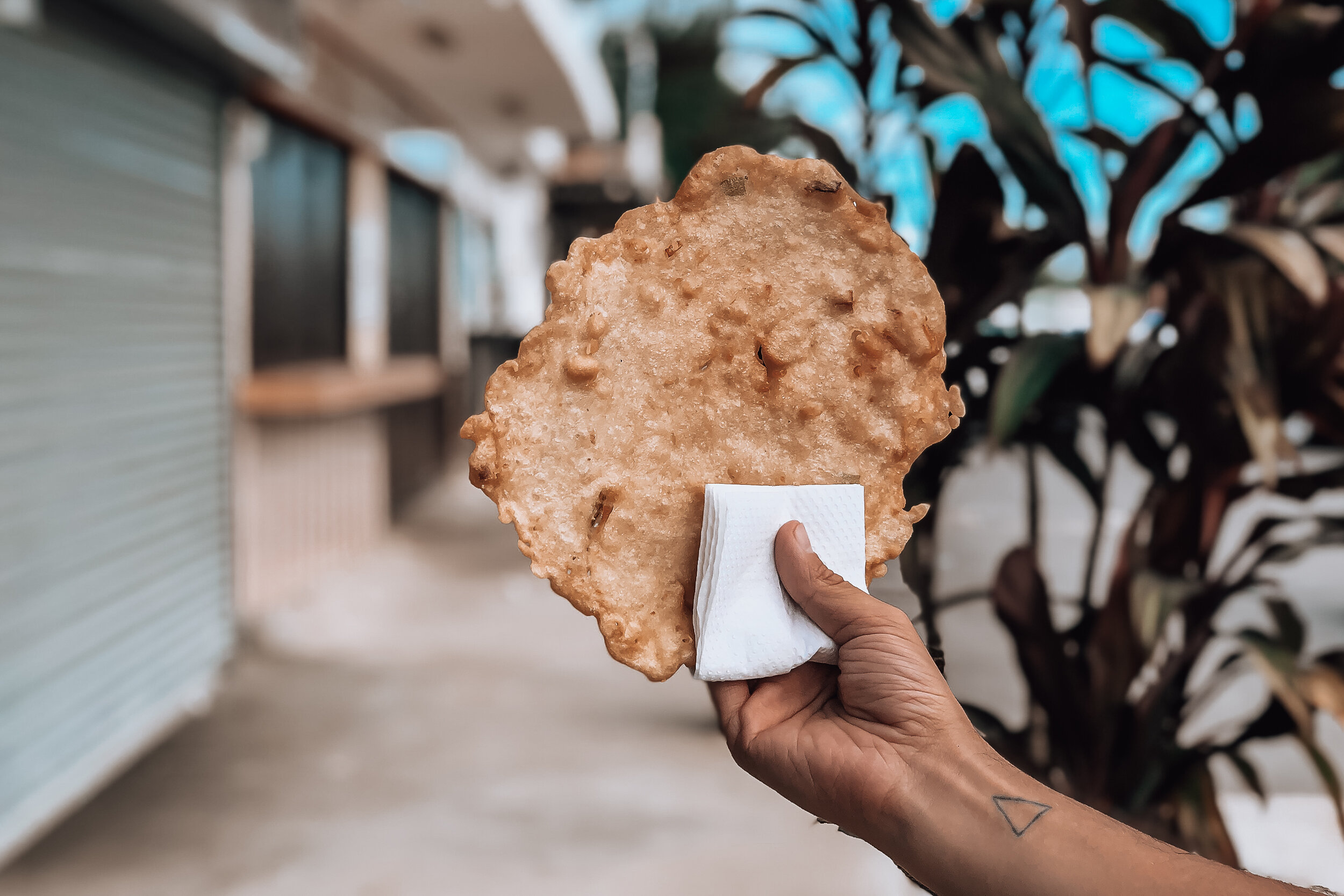
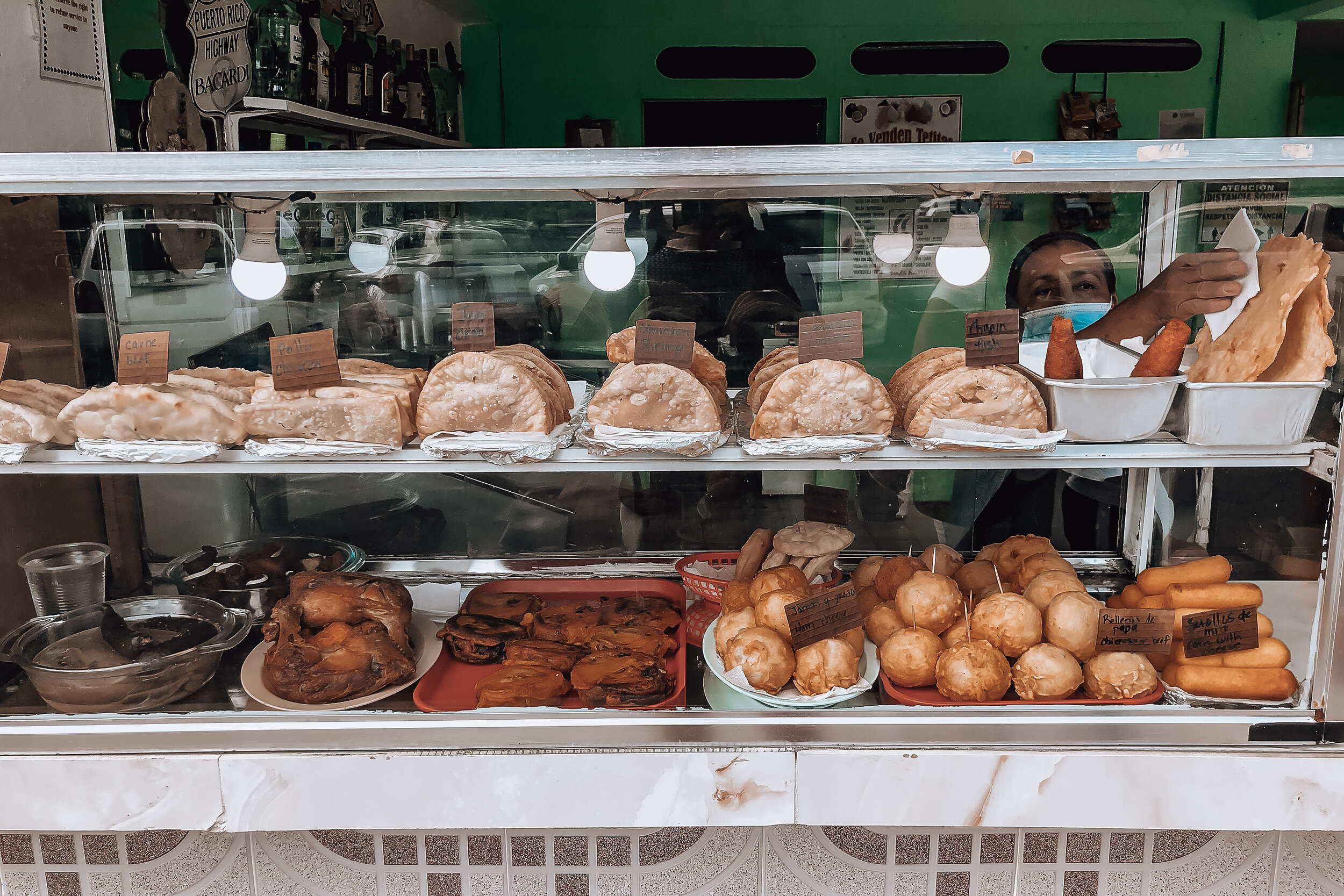
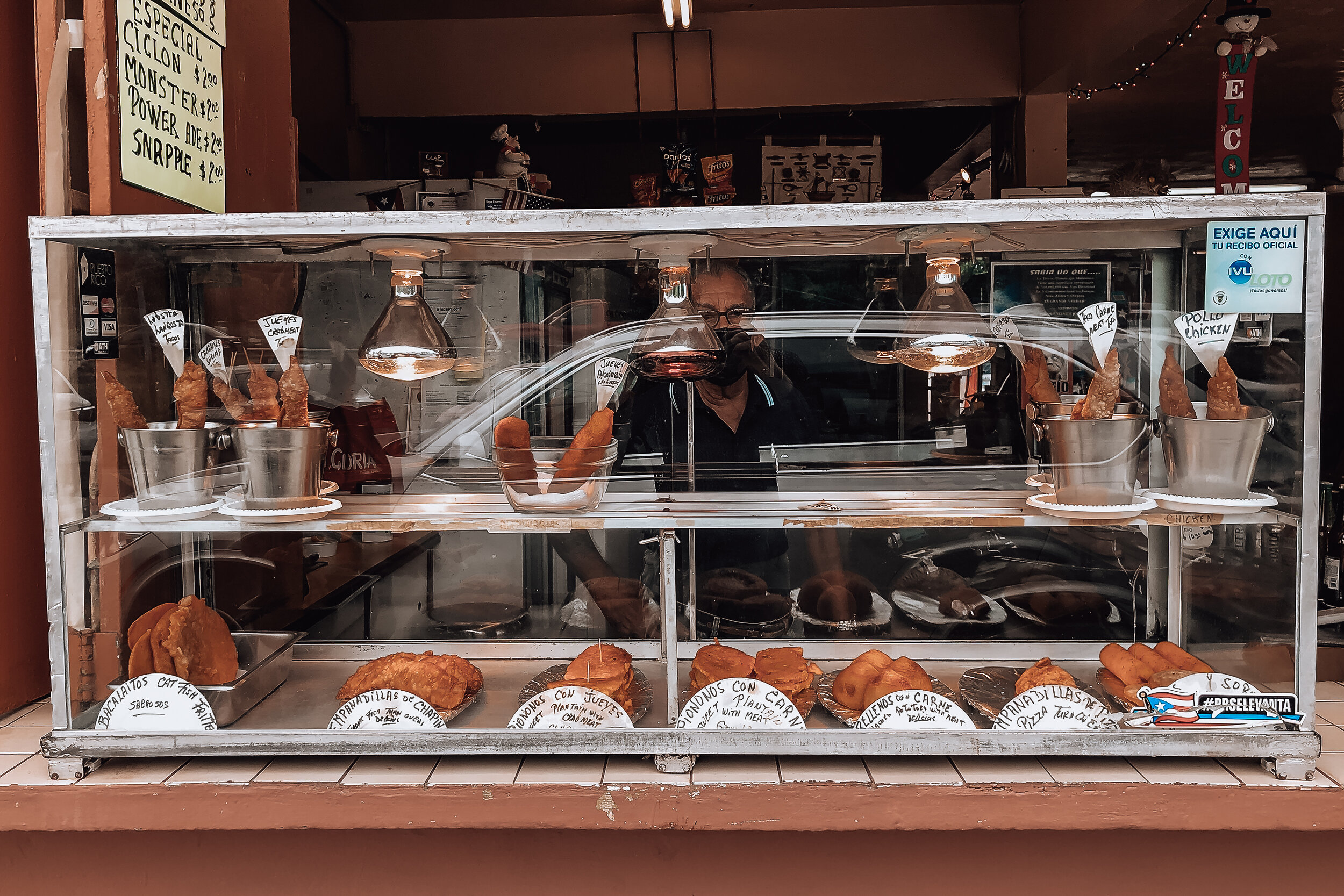
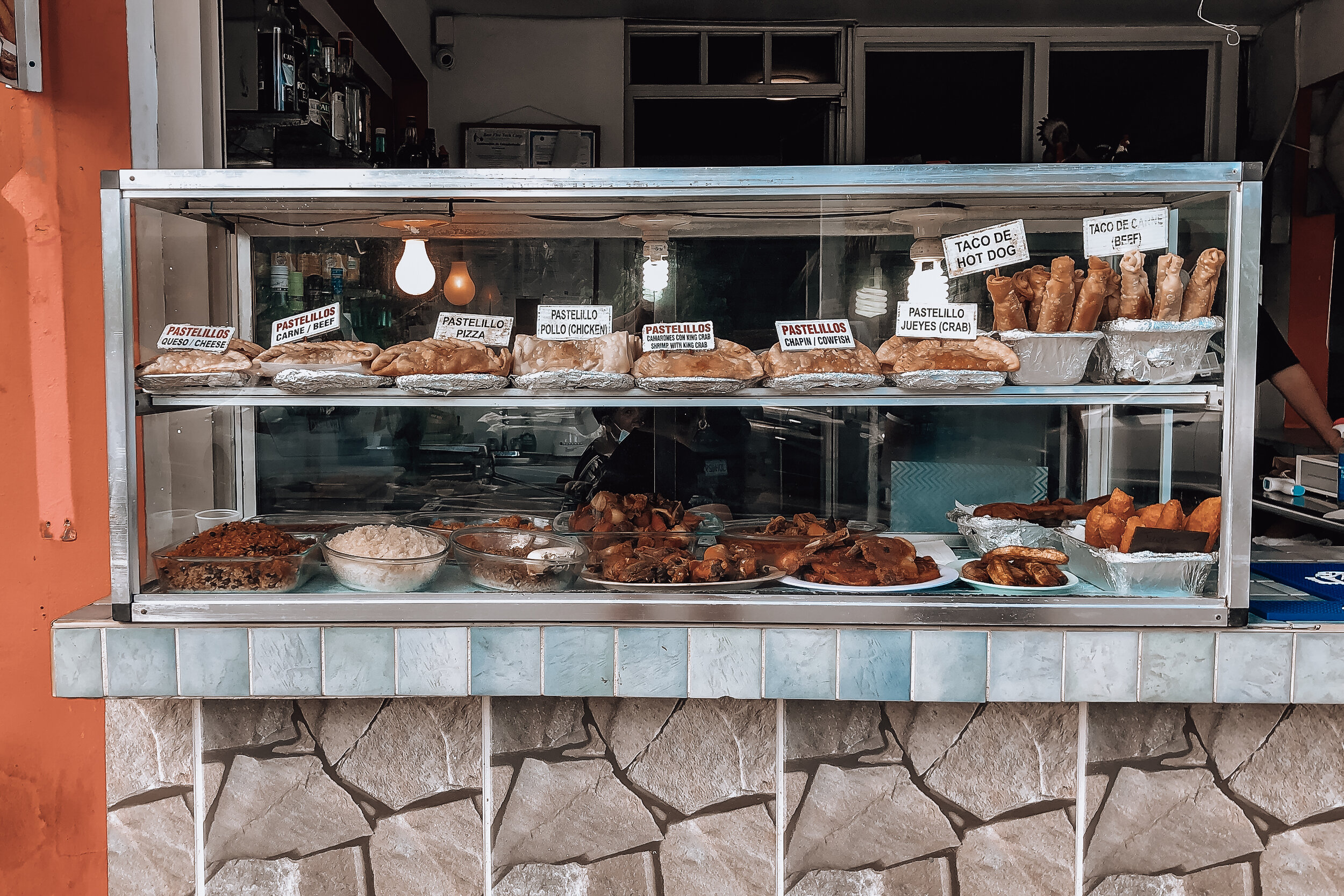
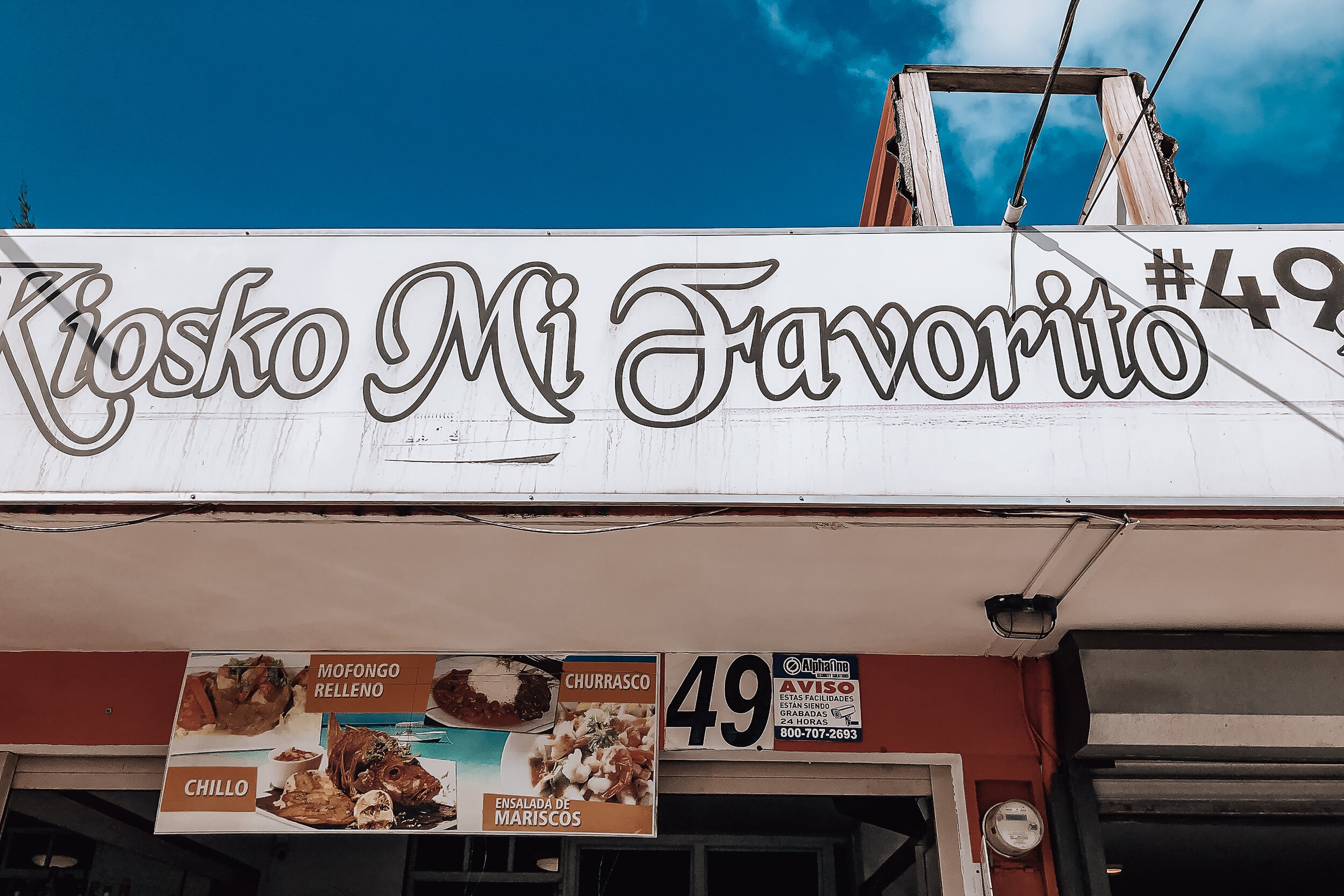
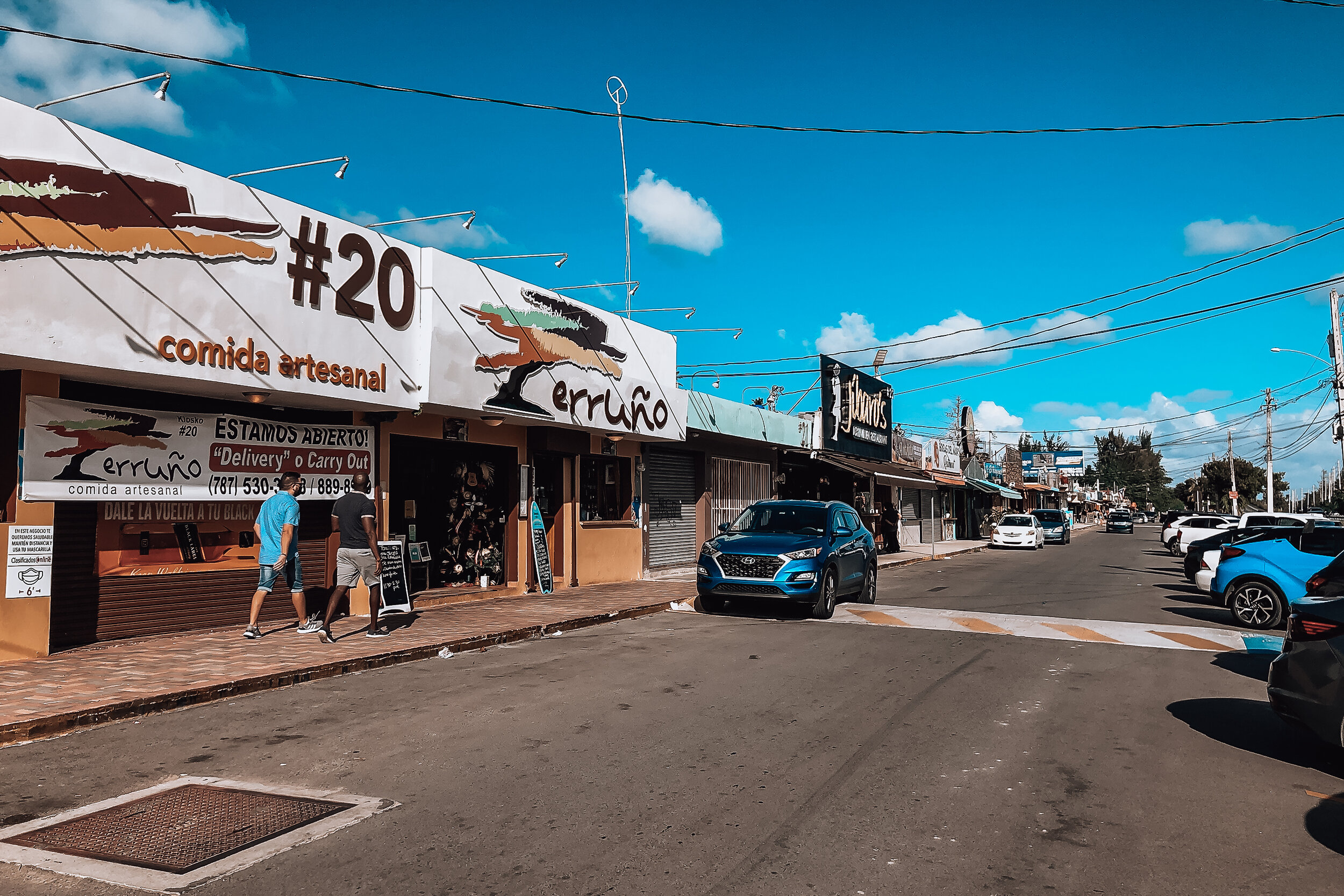
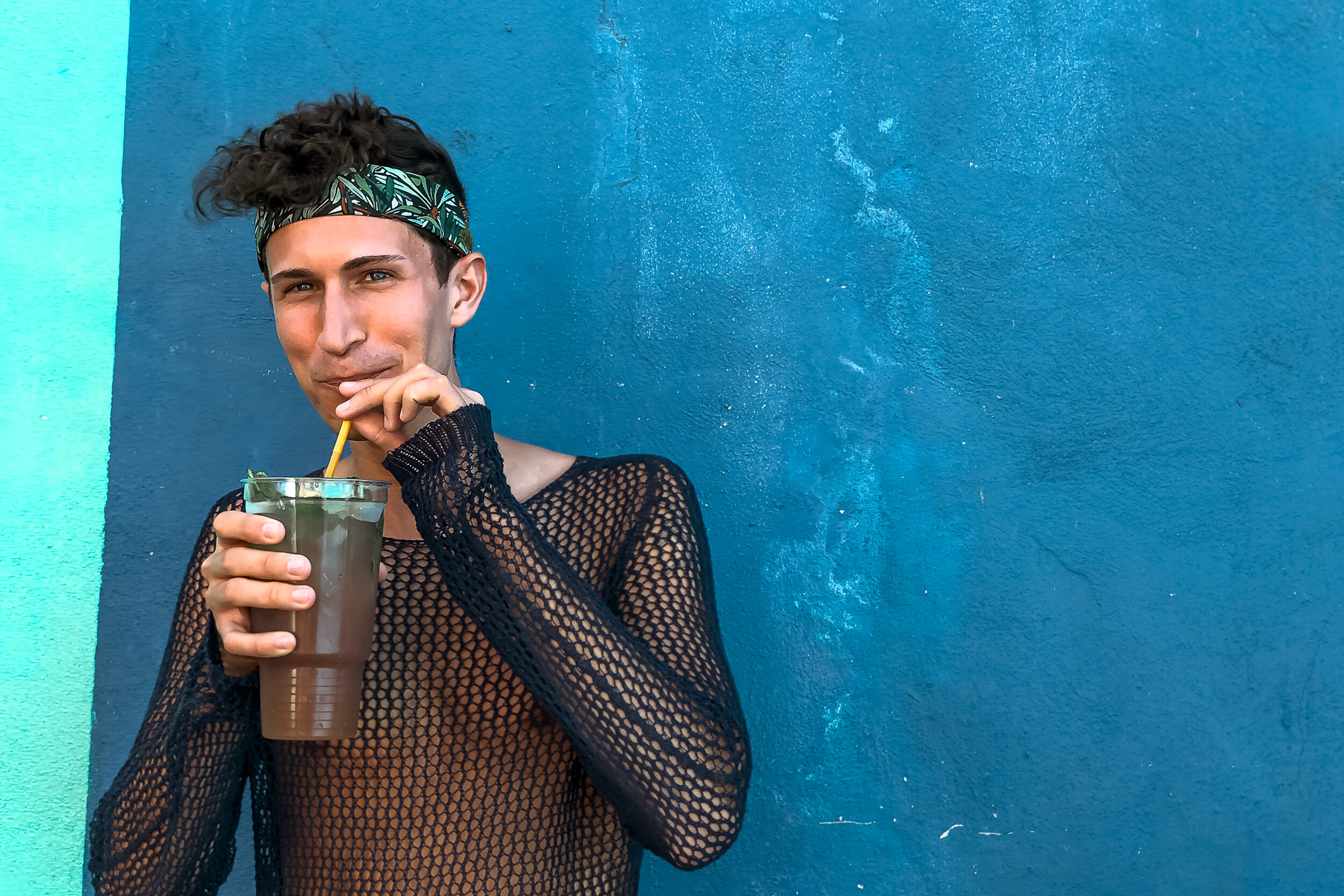
Luquillo
Nearby El Yunque is the town of Luquillo, known for the Luquillo Kiosks. Located along the highway, there are 60 street-side stalls and restaurants selling Puerto Rican street food and classic Caribbean dishes. These are some of our favorites to try:
Whole Red Snapper (Chillo). The whole fish is typically fried until crispy from head to tail. The meat is tender and easily pulls away from the bones while the fins and tails break off like “chips.”
Caribbean Lobster. Also known as a spiny lobster, it lacks the large claws of a Maine lobster but is filled with much more meat.
Mofongo. Fried green plantains that are mashed in a wooden mortar and pestle with oil, garlic and salt. Many restaurants make Stuffed Mofongo with seafood, vegetables or meat.
Carrucho. The meat of the queen conch. It’s often served raw as ceviche or salad either alone or with an arepa.
Salmorejo. A mixture of tomato and land crab meat strewed together.
Empanadillas. Similar to empanadas but slightly flakier with rolled edges.
Alcapurrias. A fritter made from green plantain and cassava molded with a leaf and fried. They’re typically filled with annatto oil and a meat.
Bacalaítos. Large flat round cod and batter fried fritters.
Kiosks to Visit
Kiosko #7 de Sonia & Peyin + Kiosco Mi Favorito #49 & #52 + El Castillo del Mar Kiosco #54. Visit any of these kiosks for Puerto Rican street food like empanadillas, alcapurrias, bacalaítos and seafood salad in an arepa.
La Parrilla Bar & Grill (Kiosko 2). For locally caught seafood & Caribbean lobsters.
Terruño Comida Artesanal (Kiosko #20). For classic dishes like mofongo, carrucho, coconut rice and plantains.
Relle Na’o (Kiosko 40). For vegan options and build your own mofongo.
Mojito Lab (Kiosko 42). For extra large mojitos & cocktails.
Beaches
After the Kiosks, head to one of the beaches. Luquillo Beach (Playa Balneario) is a swimmable palm lined beach behind the kiosks with more food stalls selling empanadas and Pina Coladas served in hallowed out pineapples. Parking costs $5. Playa Azul, is the other main beach in Luquillo for swimming, snorkeling, paddle boarding, kite surfing, and kayaking.
Las Croabas
Las Croabas is the furthest northeastern part of Puerto Rico. It’s a popular place for marine activities, exploring nature, relaxing on the beaches and kayaking to the bioluminescent bay.
Laguna Grande (Bioluminescent Bay)
Kayaking through the mangrove forests at night to reach the bioluminescent bay is one of our favorite things to do in Puerto Rico! In the lagoon, you can run your hands through the water, let it run down your arms and splash around. Movement causes the dinoflagellates (bioluminescent plankton) in the water to glow a bright blue color.
Book a Tour. You need to book a tour to visit Laguna Grande. There are a dozen companies offering nightly tours from Parque Las Croabas. Most offer two tour times, one at twilight and one hours after sunset. The biggest difference between the twilight tour and nighttime tour is how much of the mangrove forest you can see while kayaking to the lagoon. Tours cost around $50/person and last 1h 30min. We’ve booked through Island Kayaking Adventure and Kayaking Puerto Rico.
Good to Know:
Visit on a sunny day, the dinoflagellates are more active at night.
Avoid going when the moon is full, the dinoflagellates are difficult to see. If you do, tour guides will bring tarps to cover the kayaks to block out the light.
Don’t bring your phone for pictures, they can’t capture the bioluminescence.
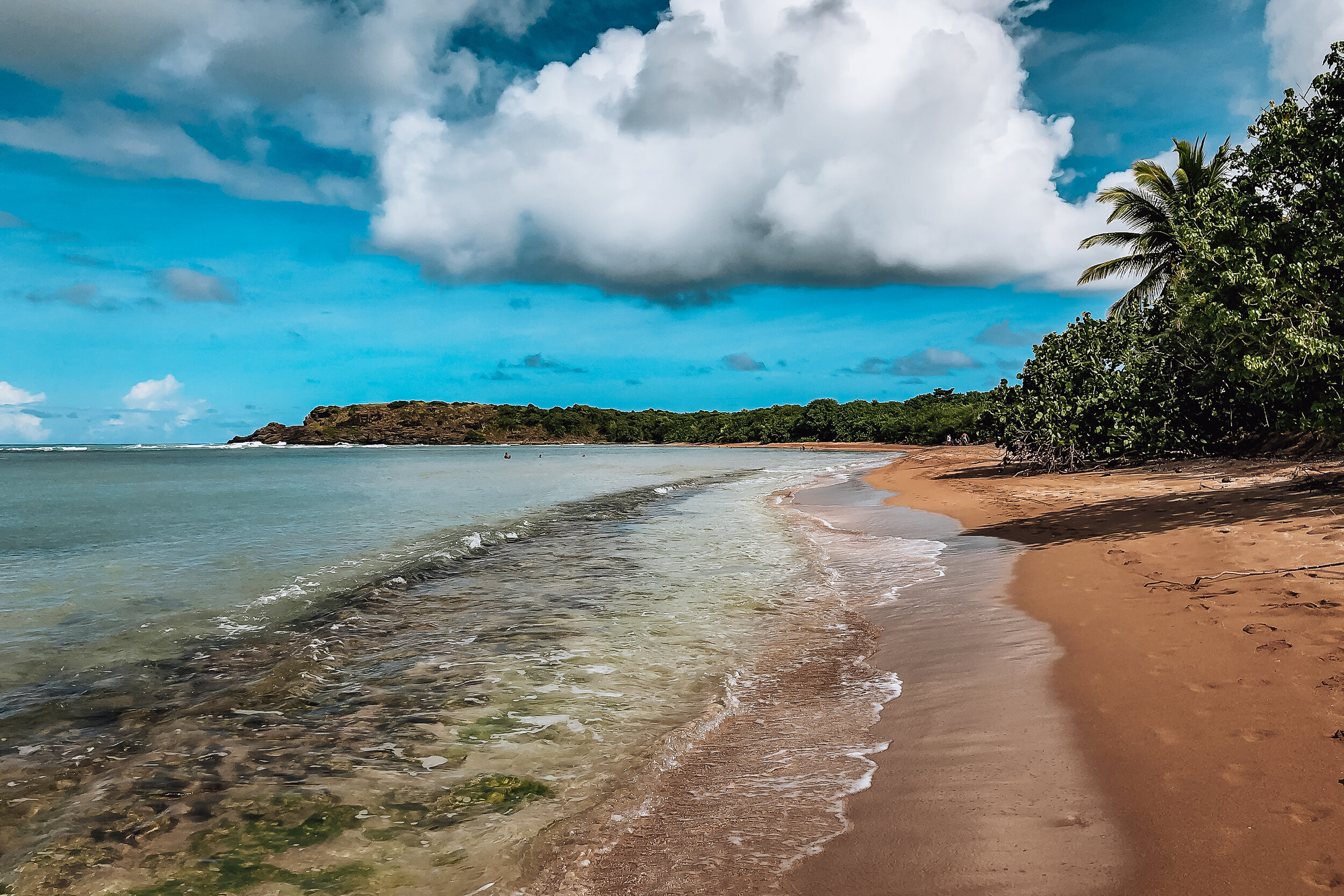
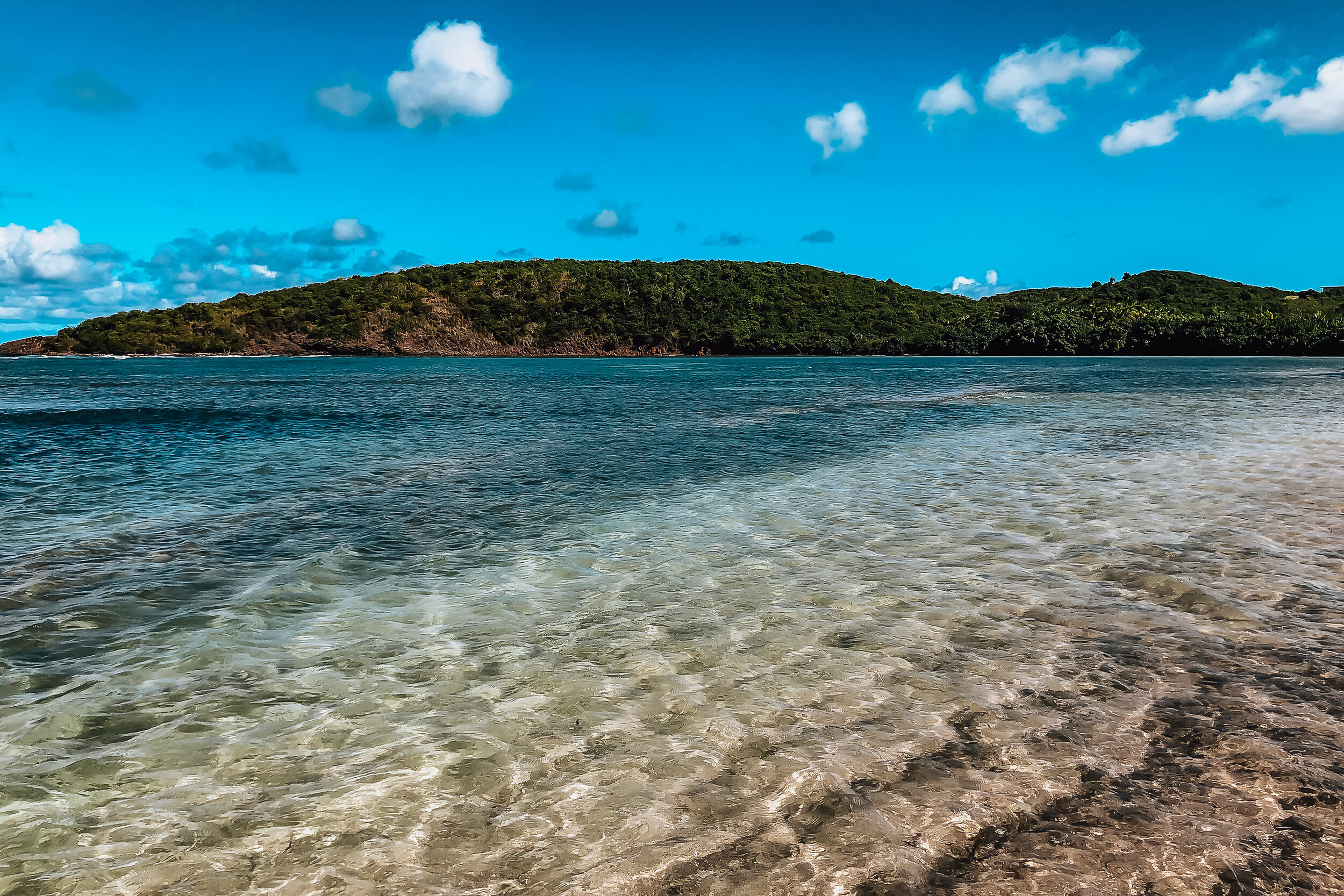
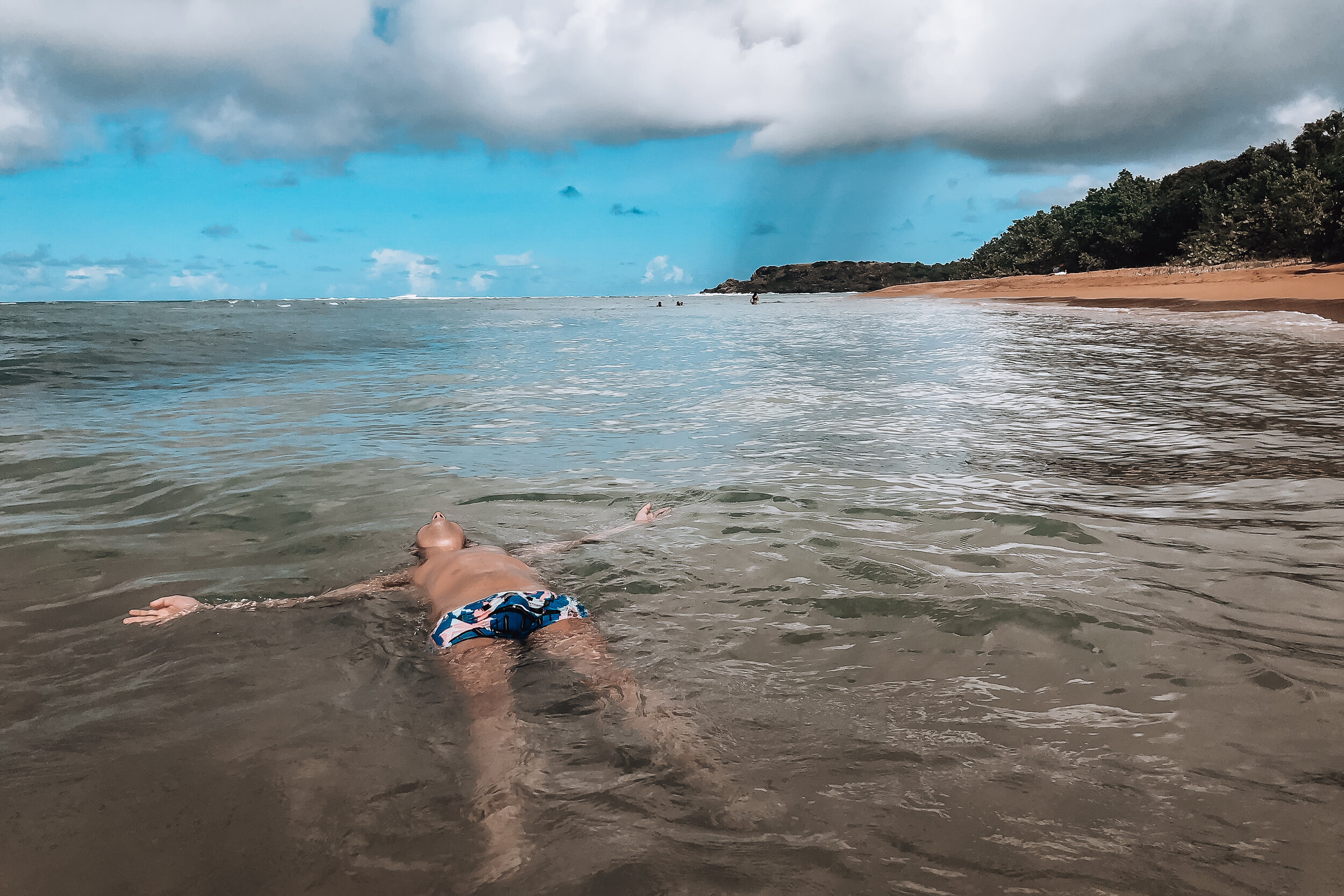
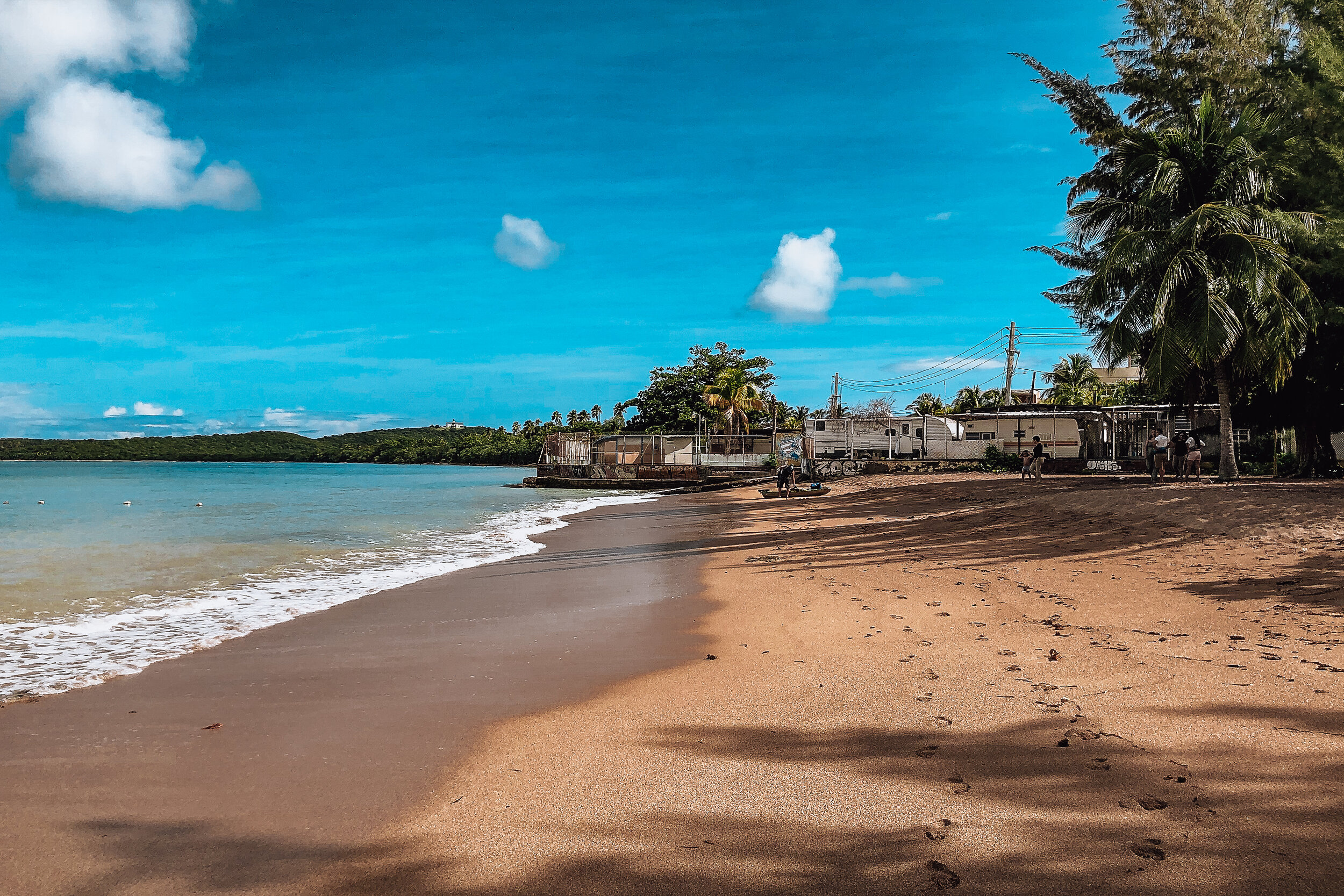
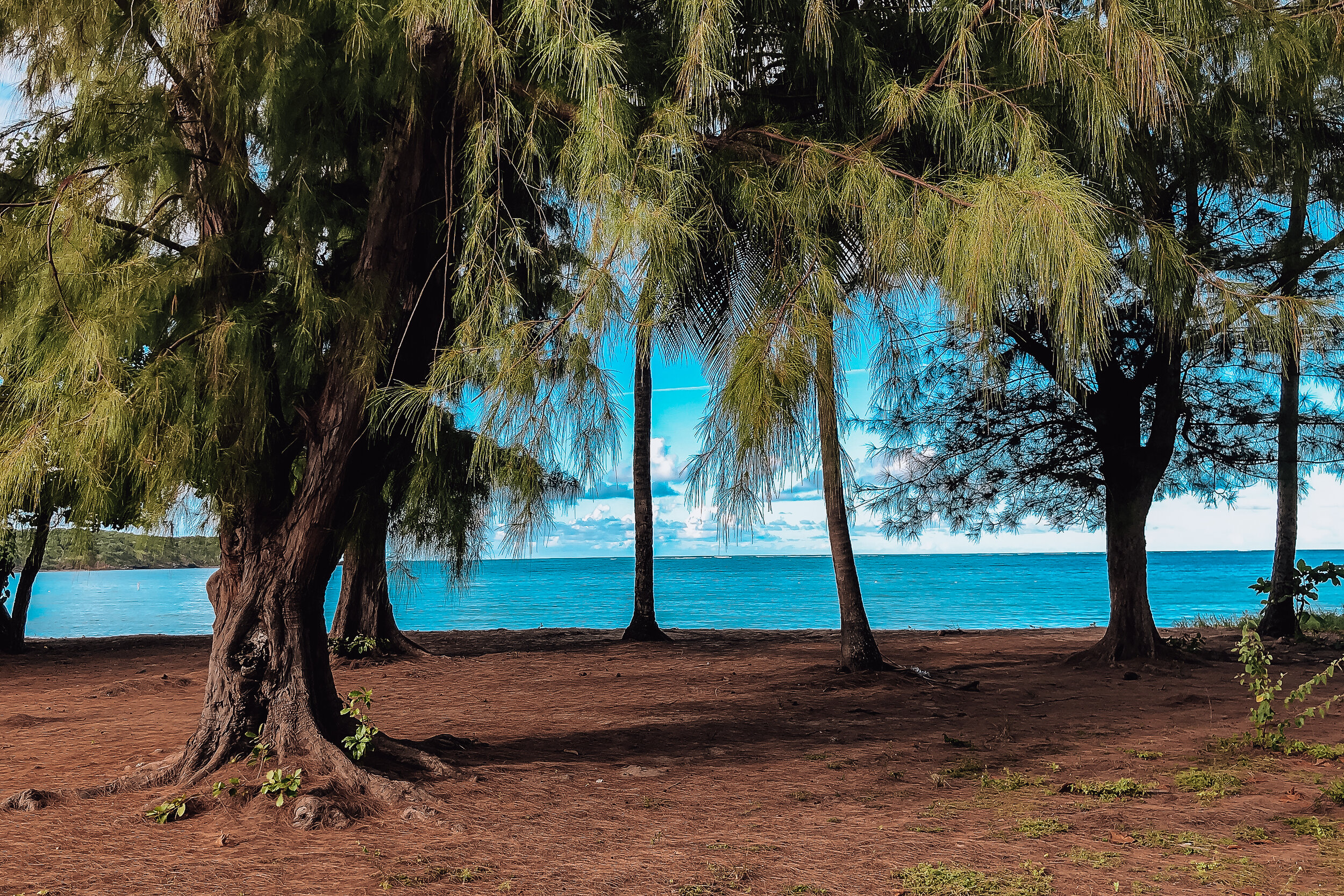
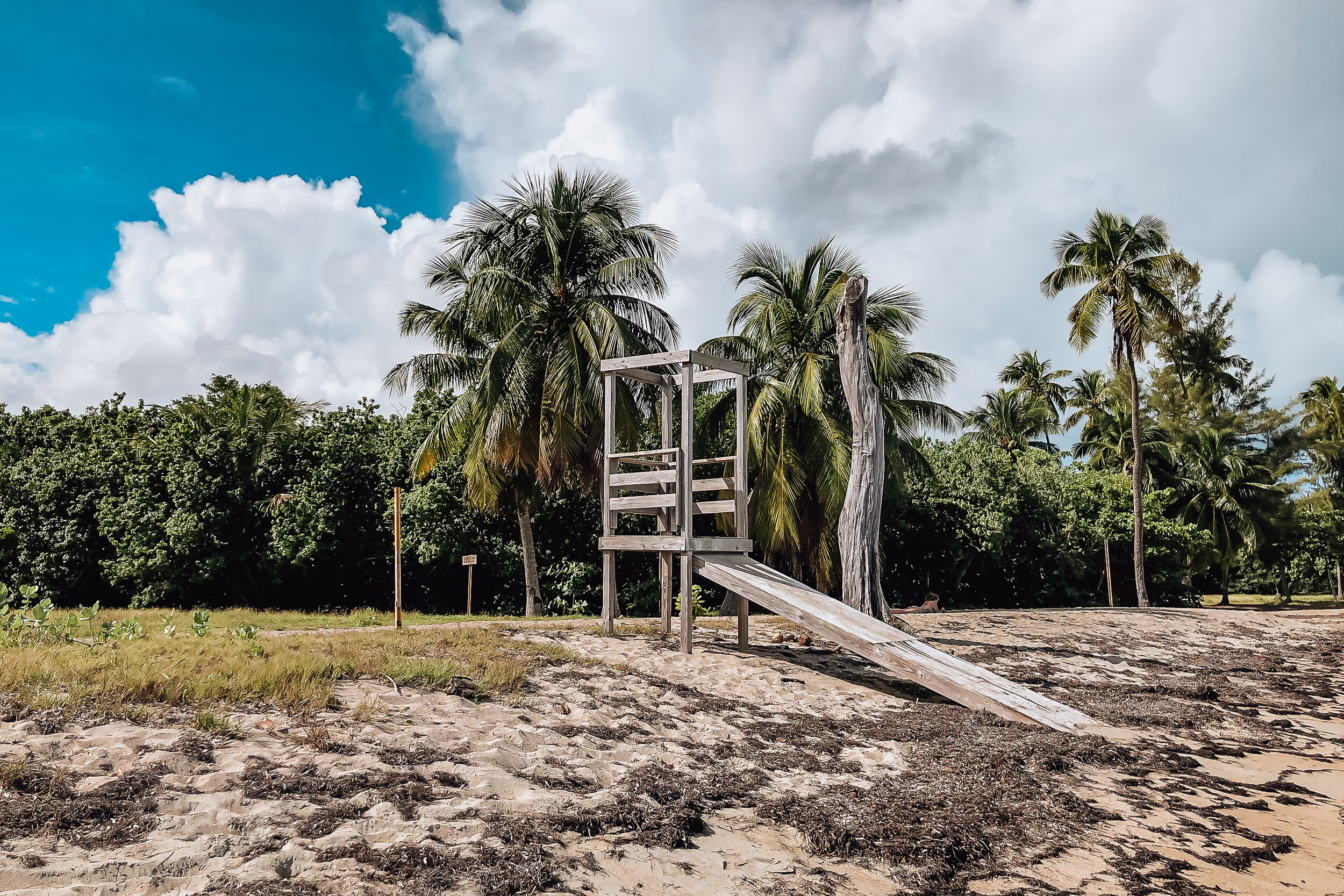
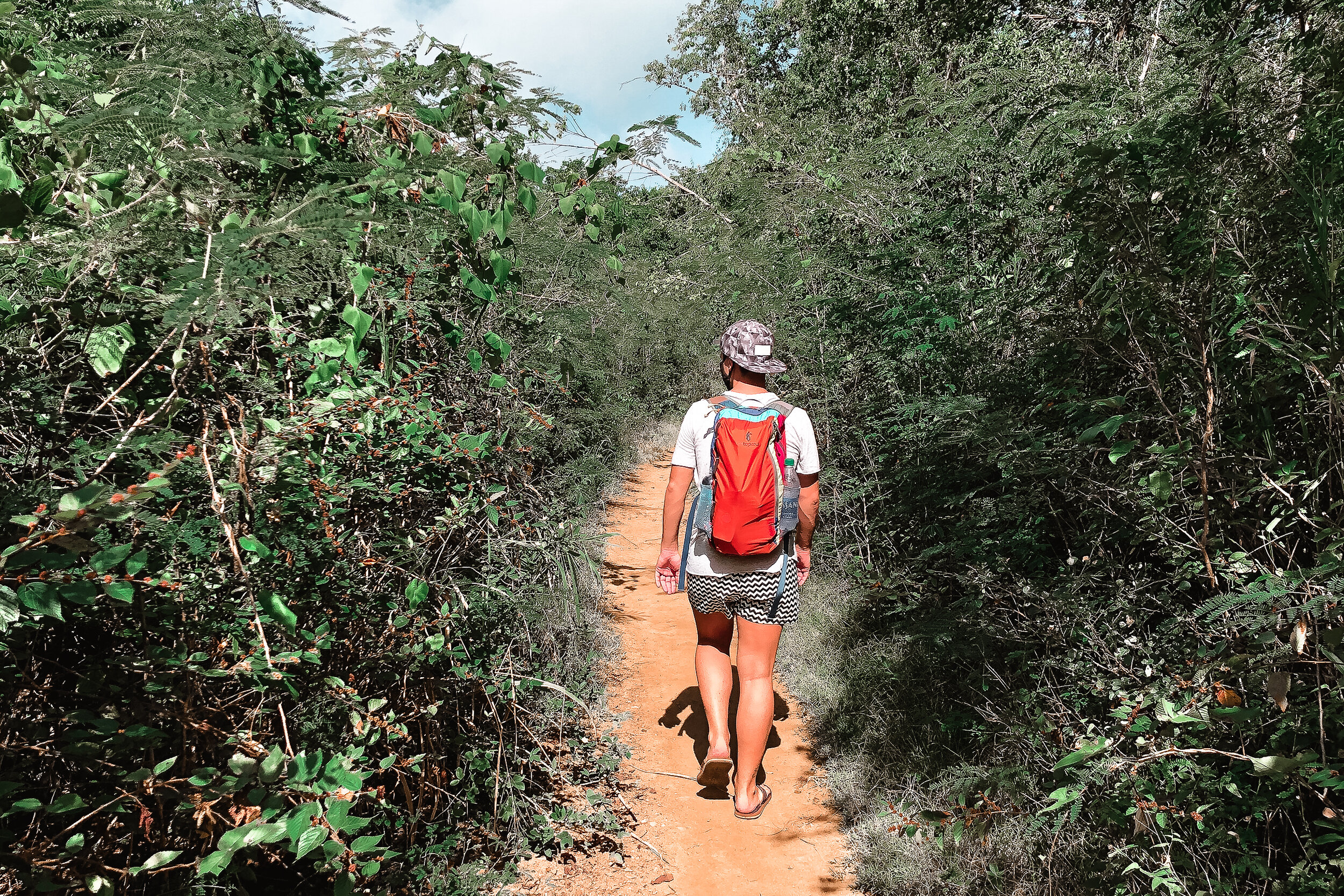
Visit the Beaches
Seven Seas Beach. This is the main beach in Las Croabas. It’s great for swimming, snorkeling and renting kayaks or stand up paddles. The beach has a sandy shore with a rocky ledge several feet into the water. The beach is divided by a mobile home park. The east side is narrow but long and great for walking. The west side is larger with pavilions available for rent and a nature trail leading to Playa Escondida and Playa Colora.
Playa La Matita. A semi secluded beach east of Seven Seas Beach. It’s a great destination to kayak to, look for conch shells or hike to La Zanja from.
Playa Escondida. This long golden sand beach has calm and shallow waters perfect for lounging in. The shore is lined with sea grape trees offering shaded nooks to relax under. The beach is popular with all groups of people, especially the LGBTQ+ community. It’s one of those beautiful and welcoming places you’ll want to stay at all day!
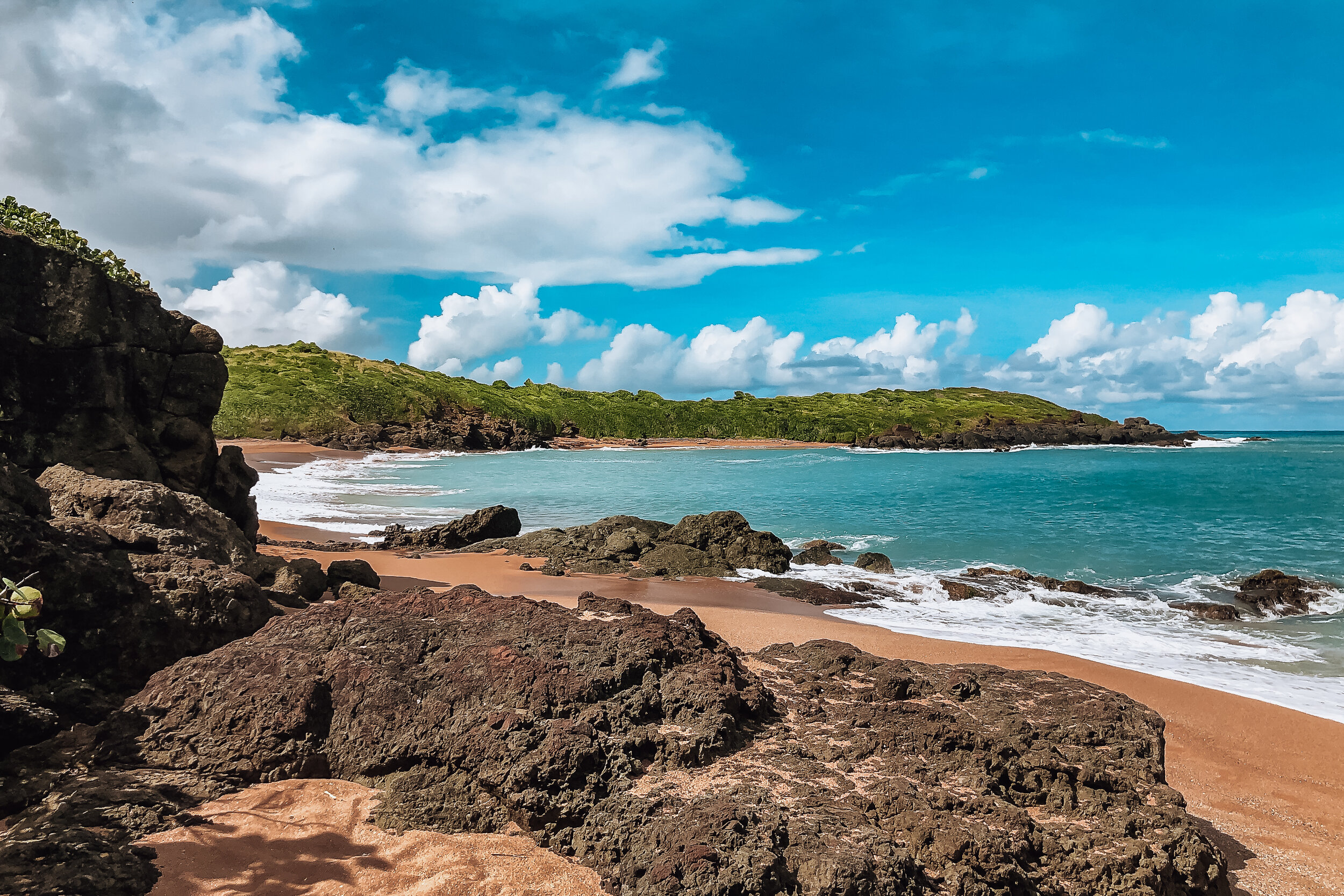
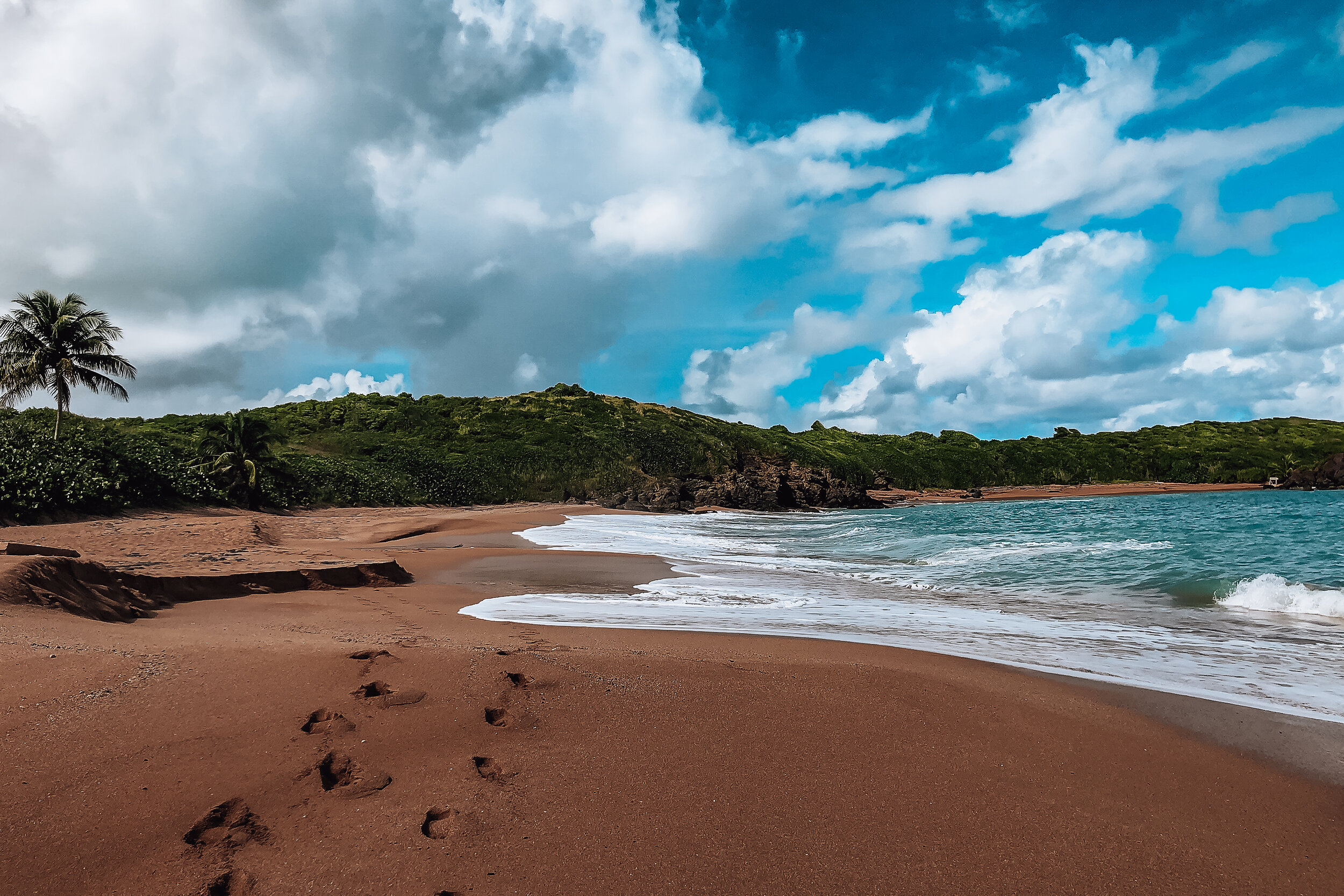
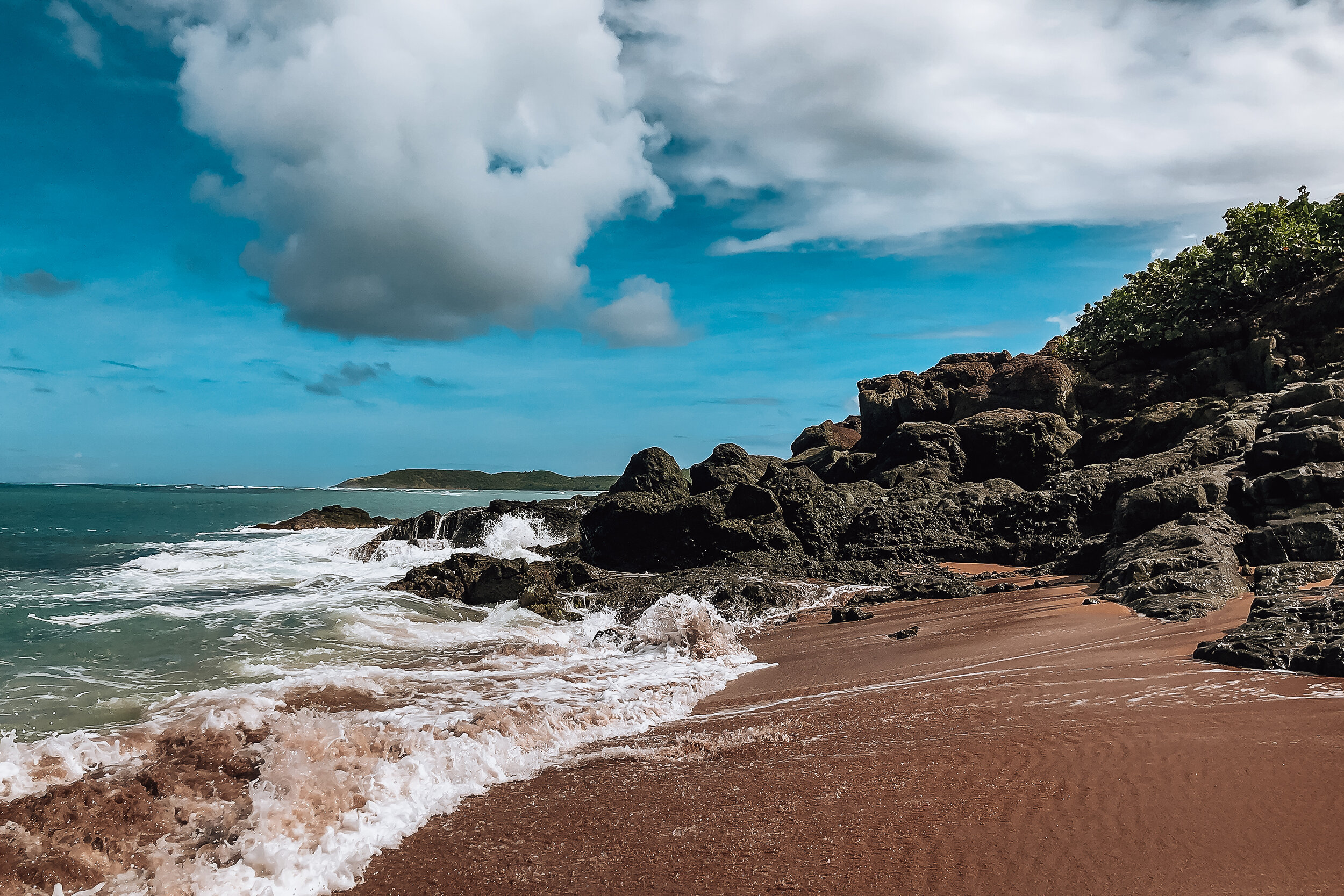
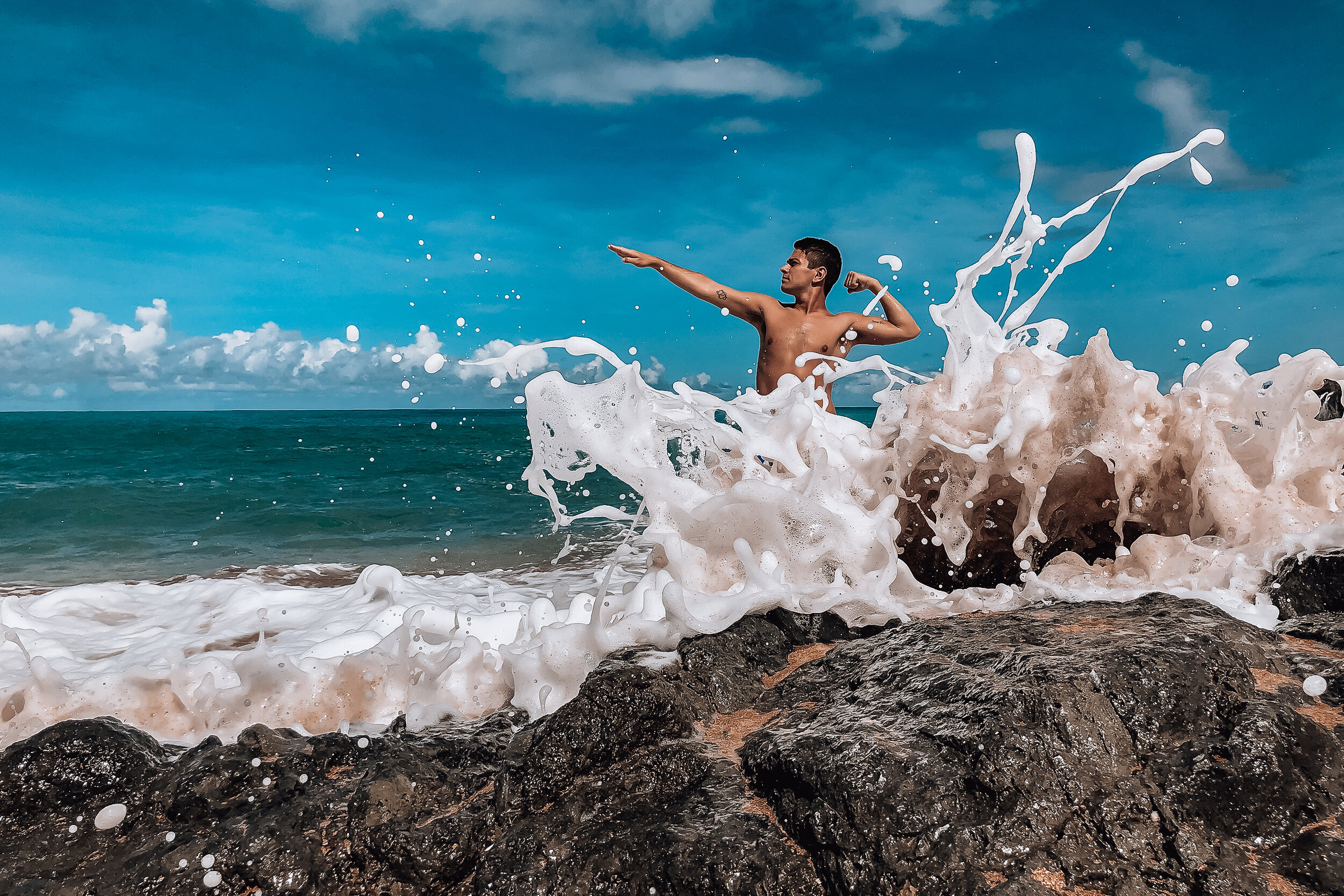
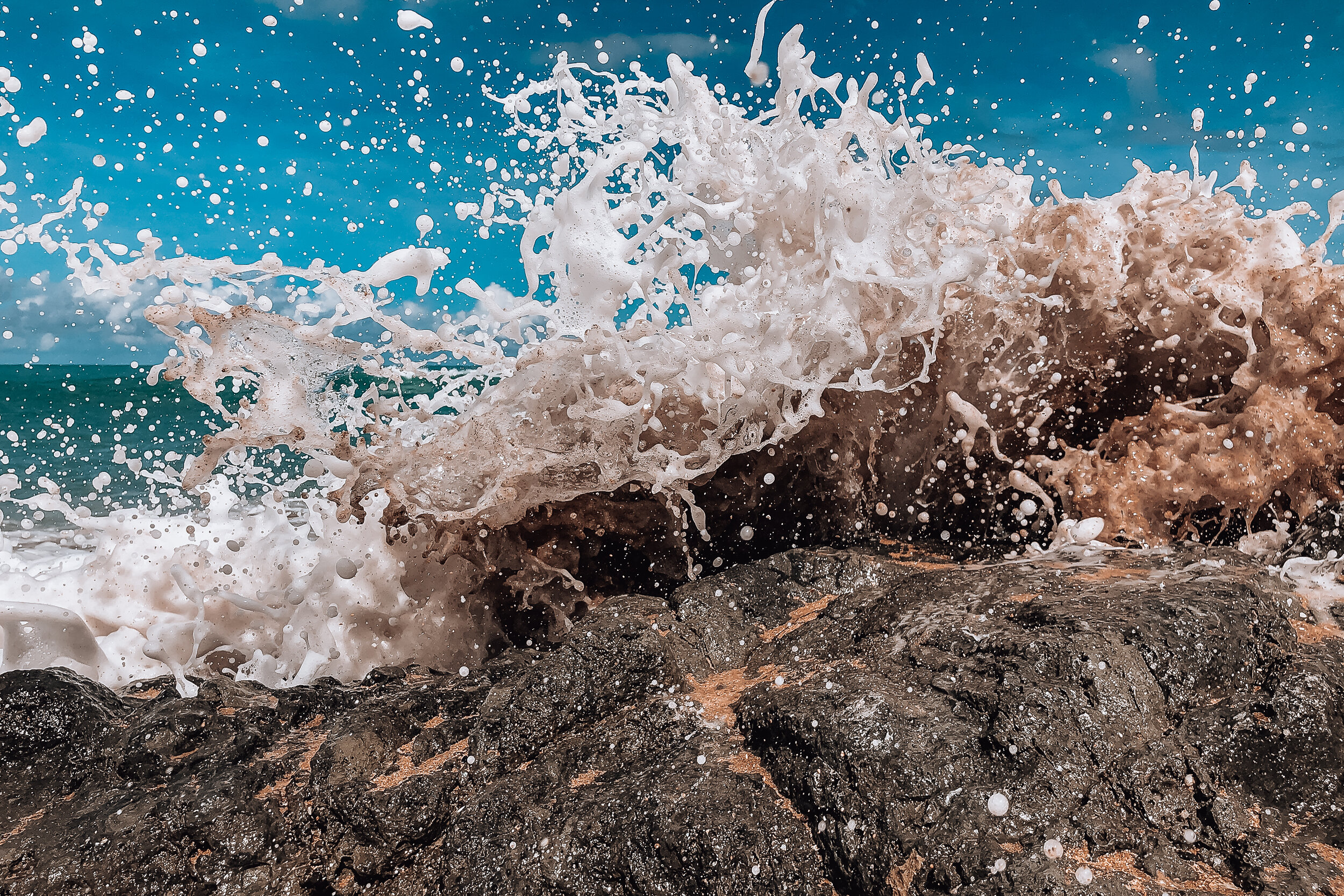
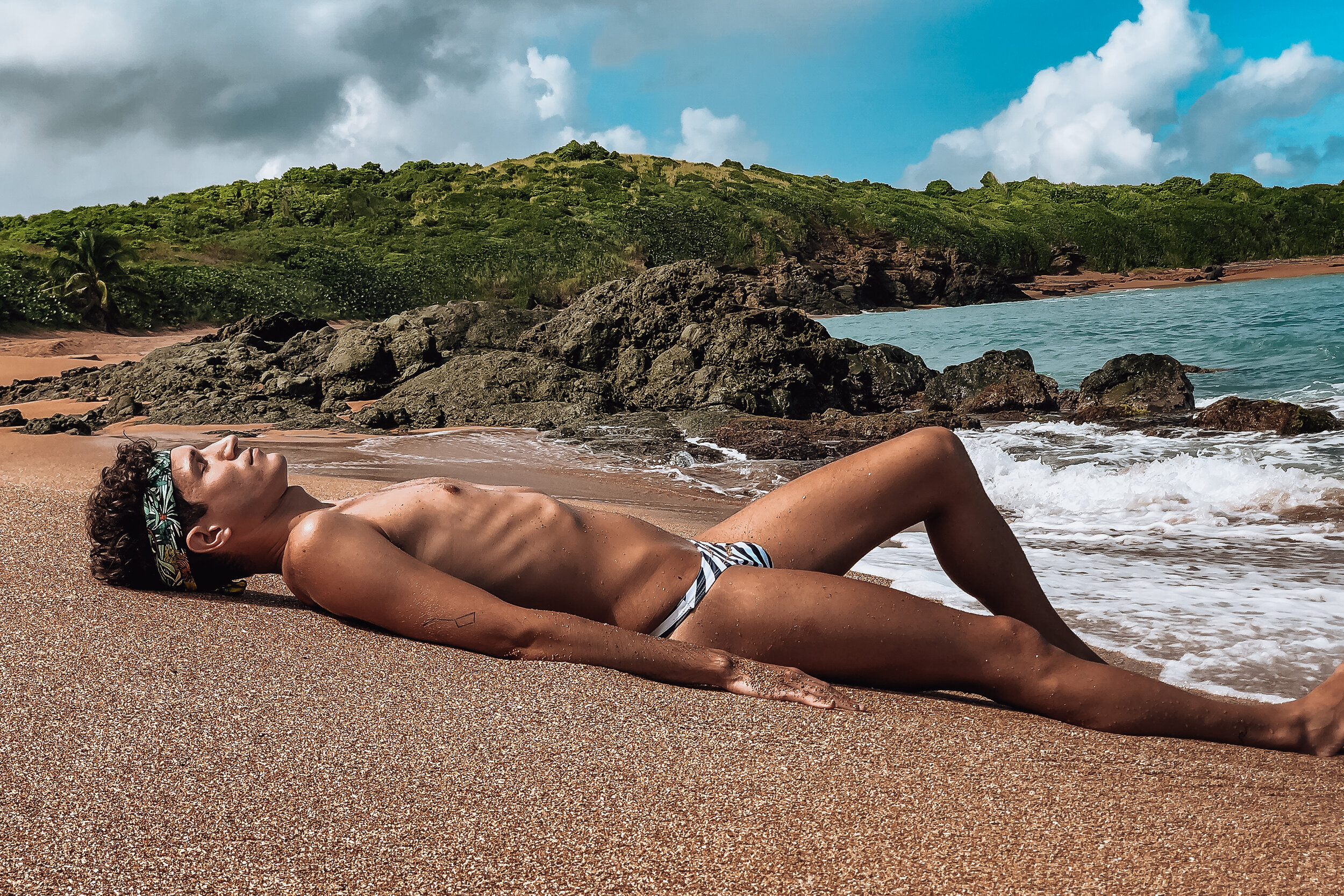
Playa Colora. A semi secluded beach great for sunbathing and enjoying nature. The waves are large and the undertow is strong making it un-safe for swimming. Though not an official nude beach, people come here to sunbathe naked near the rock formations to the right.
Getting to Escondida & Colora. Both beaches are accessible through a nature trail at the west end of Seven Seas Beach. It’s an easy walk that takes about 30 minutes. The trail forks after about 5 minutes, take a right and continue walking. This trails leads directly to Playa Escondida. Halfway through the trail is a short path that leads to Playa Colora.
Pro-tip: Please take your trash with you and don’t pile it up at the trail heads.
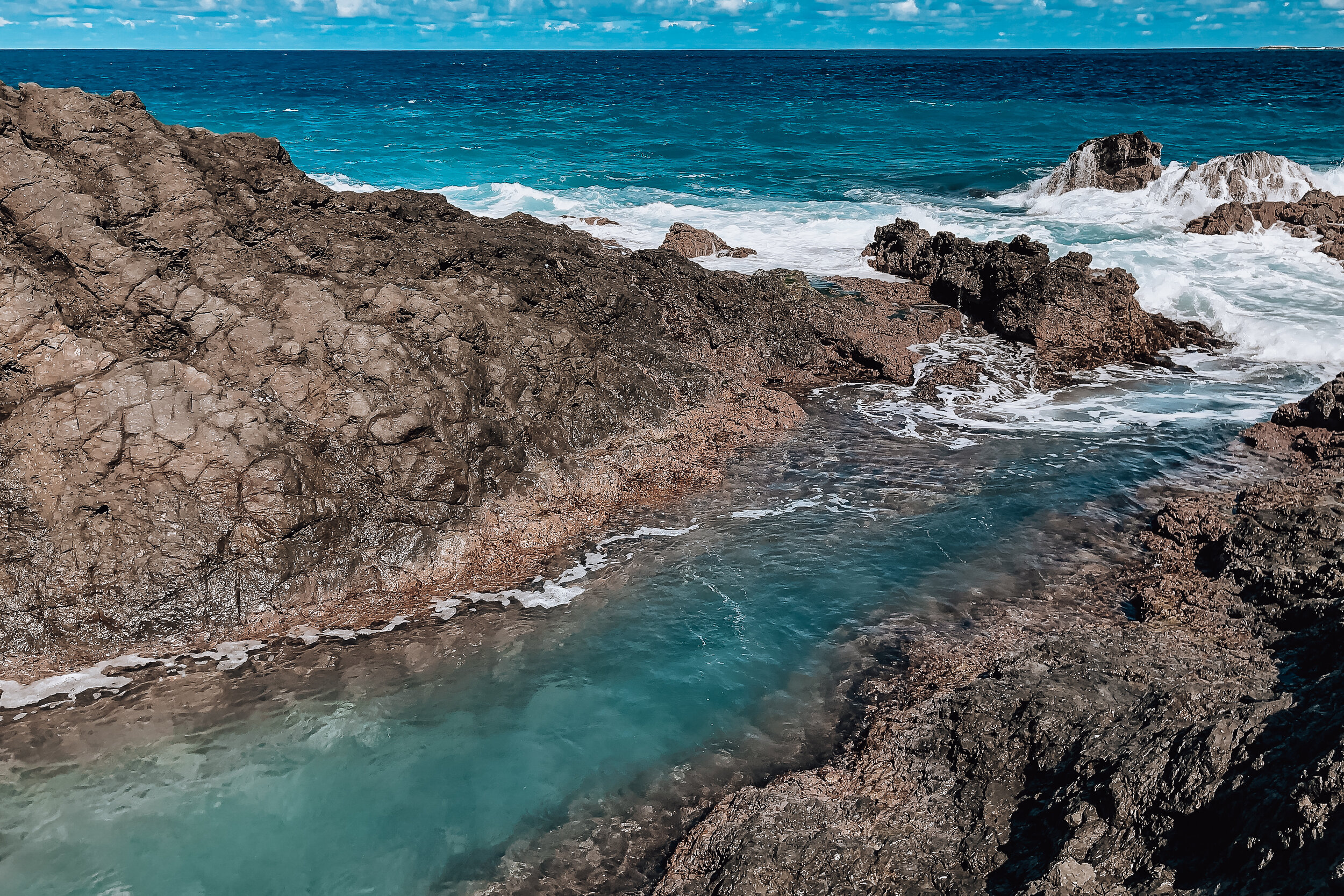
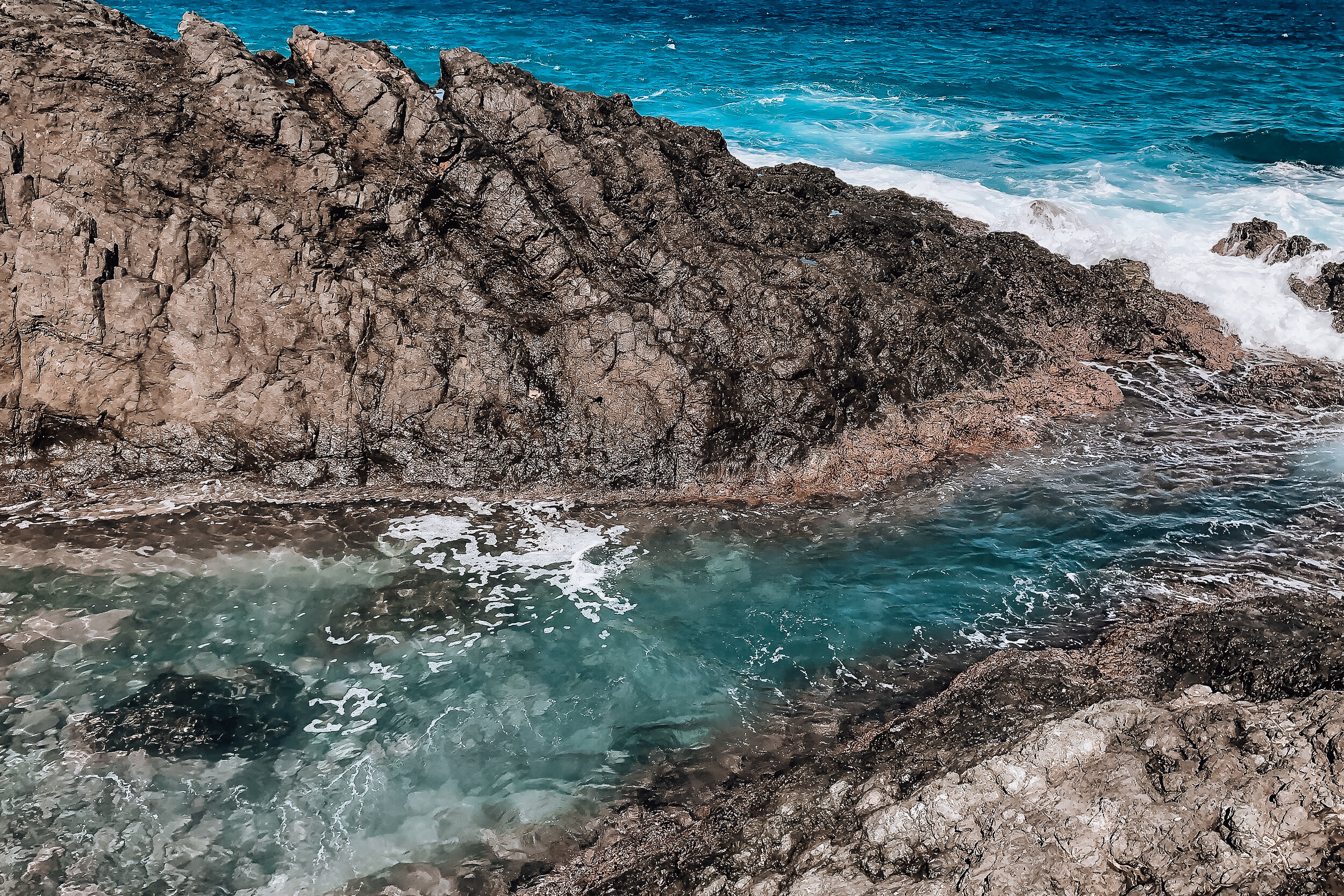
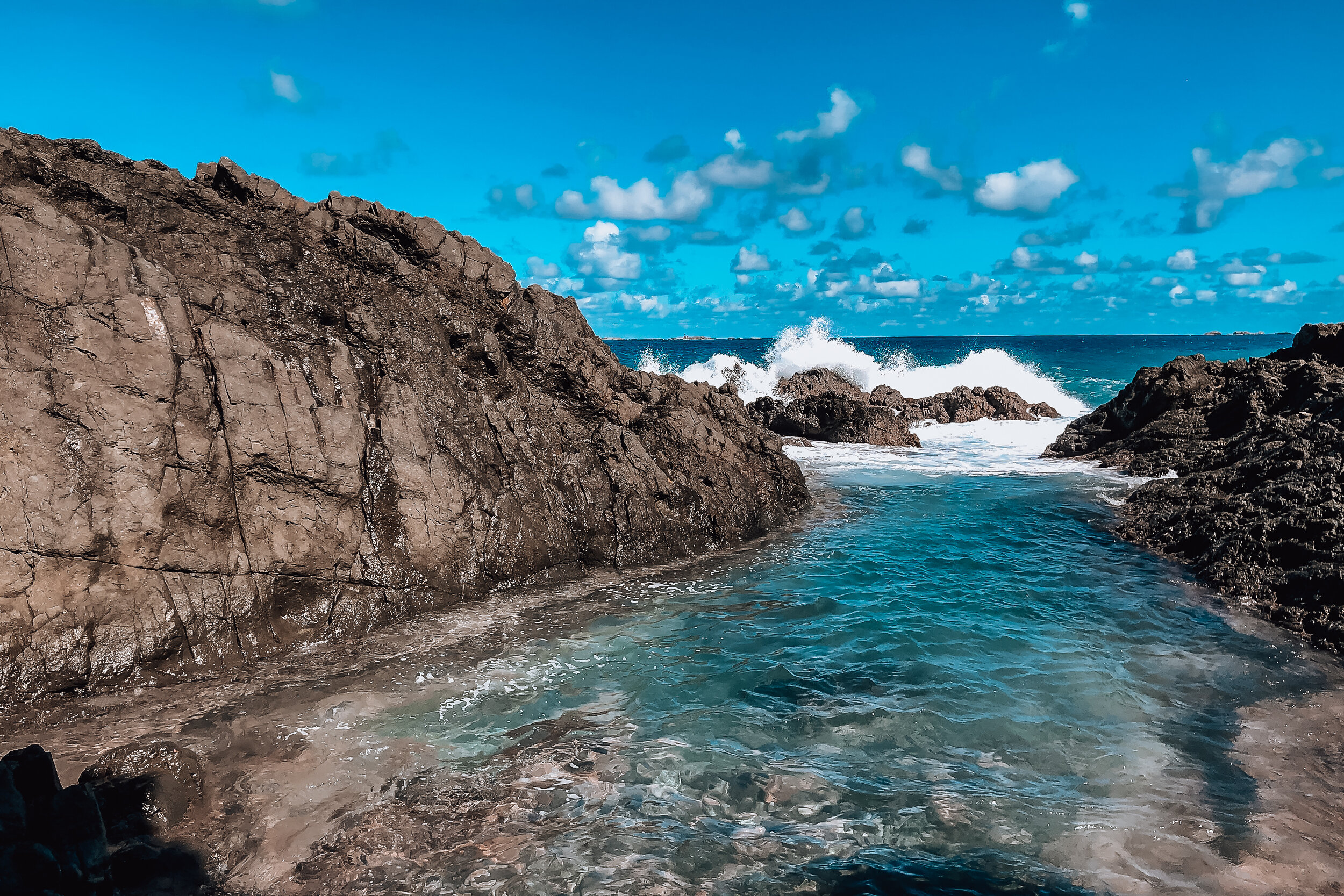
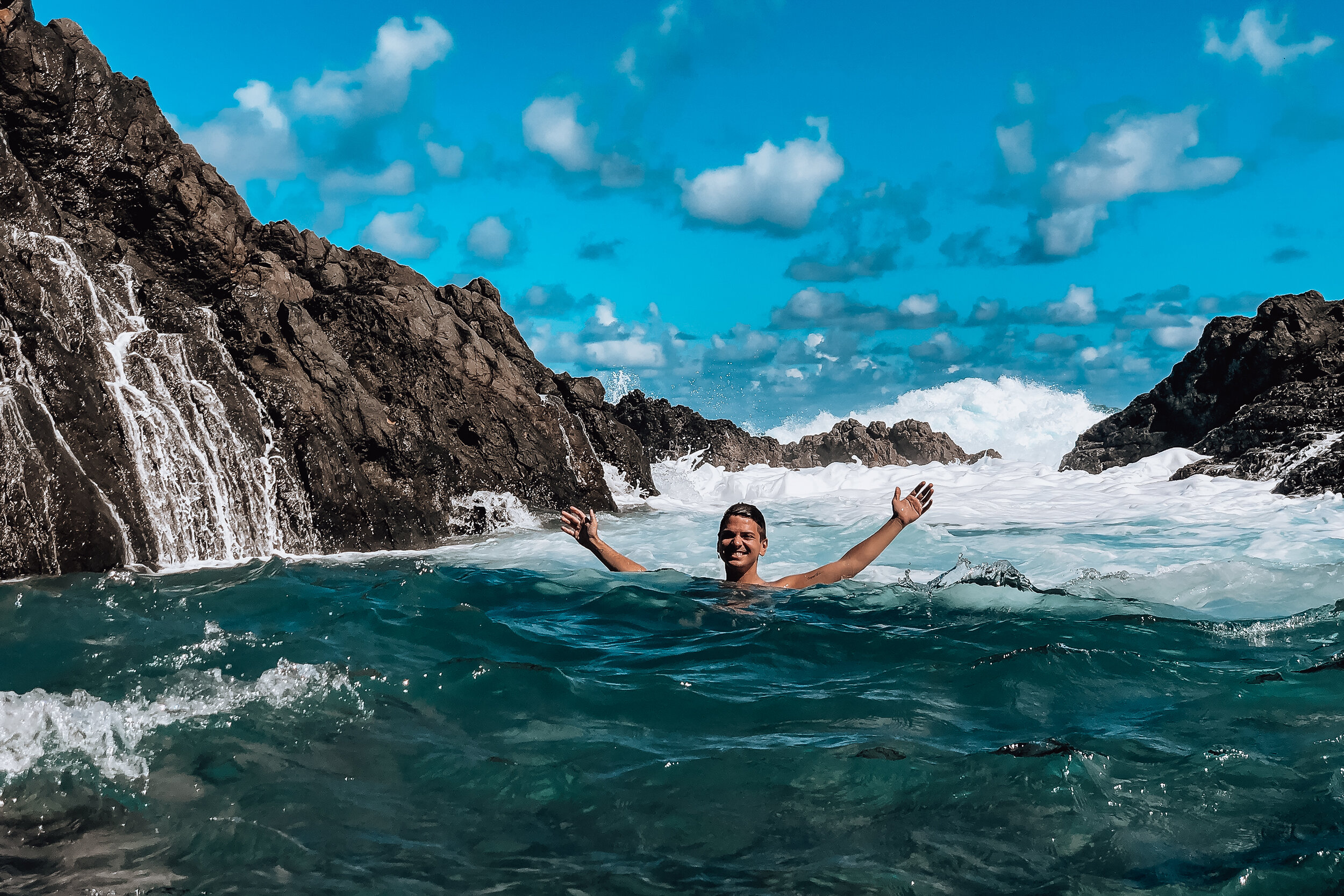
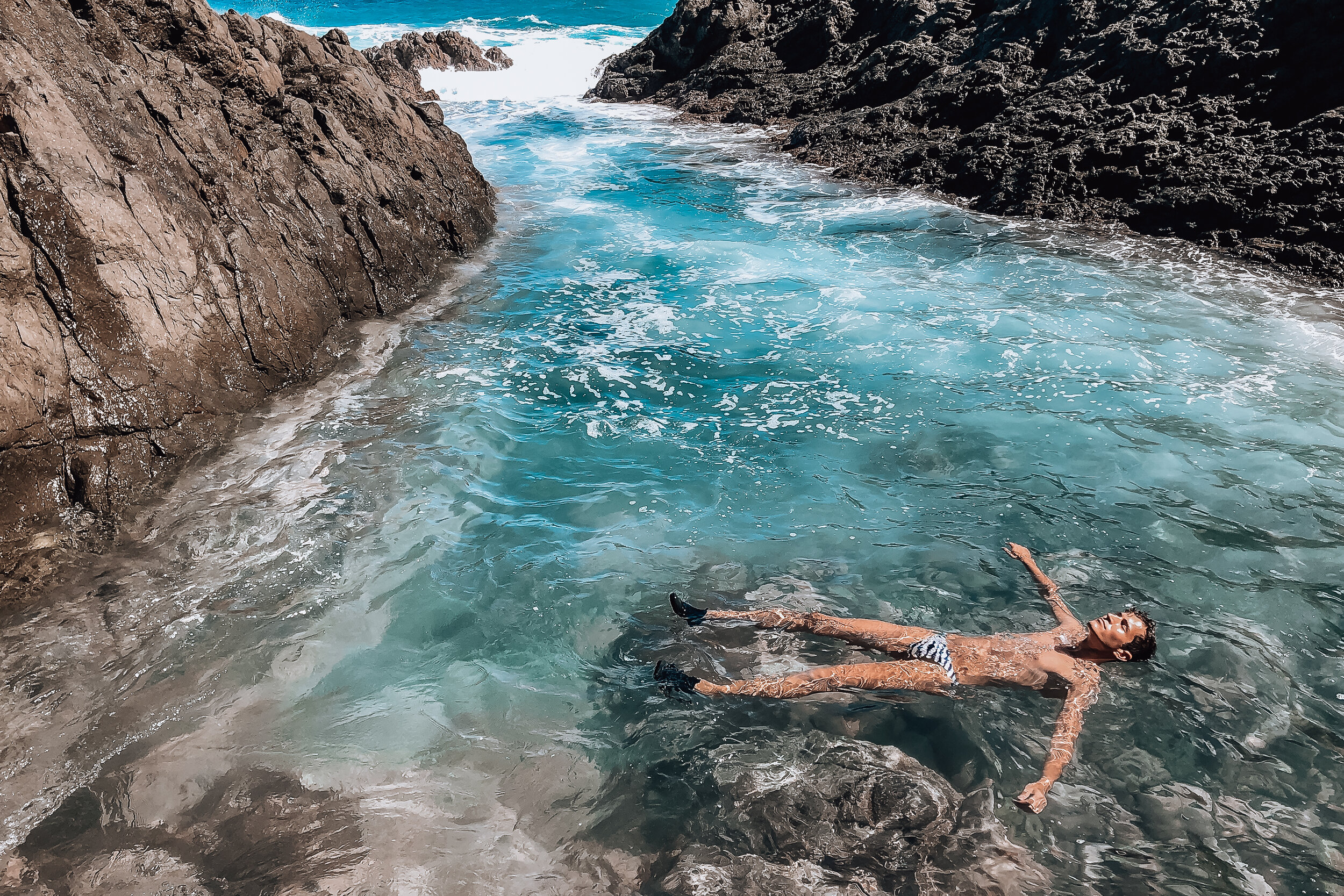
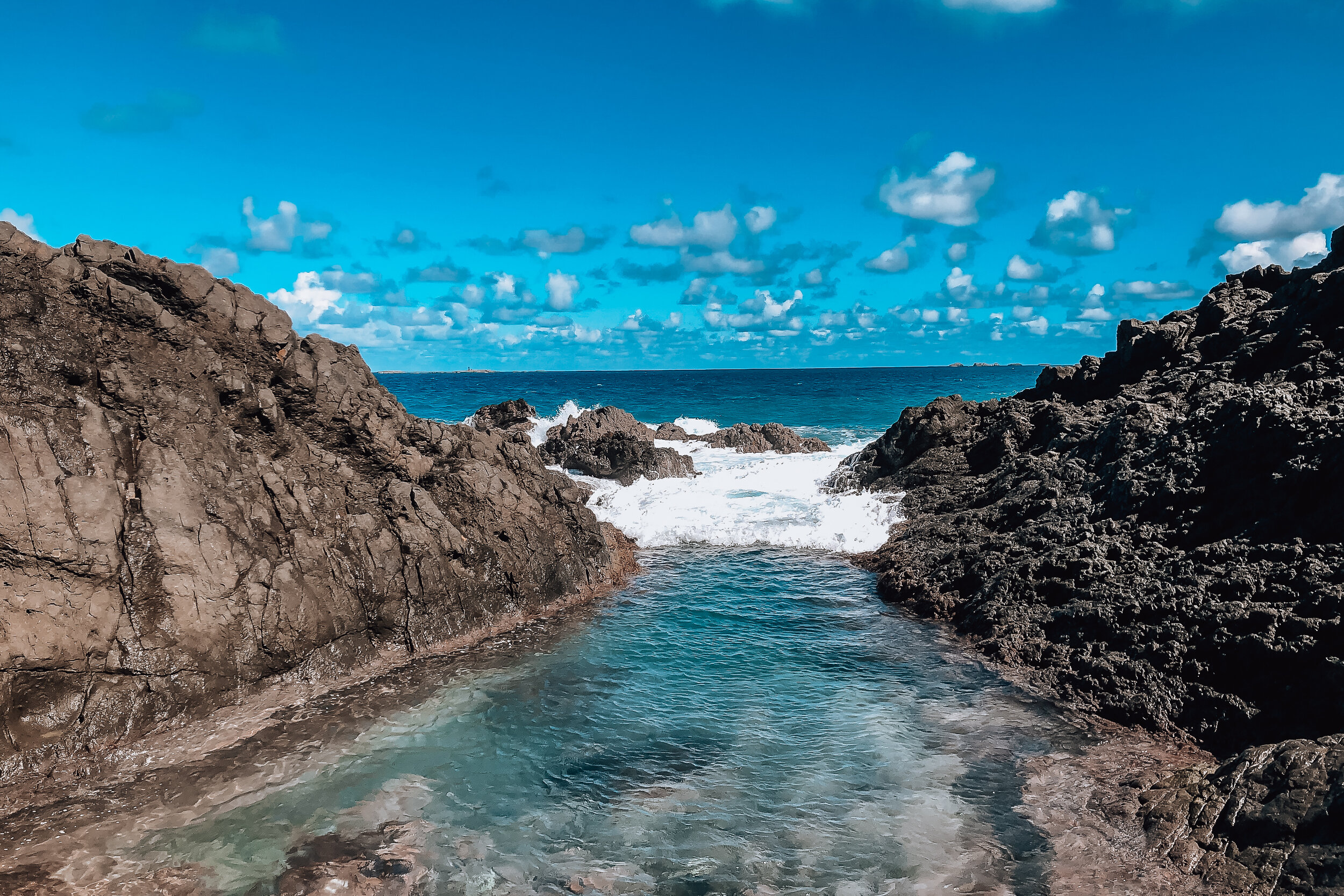
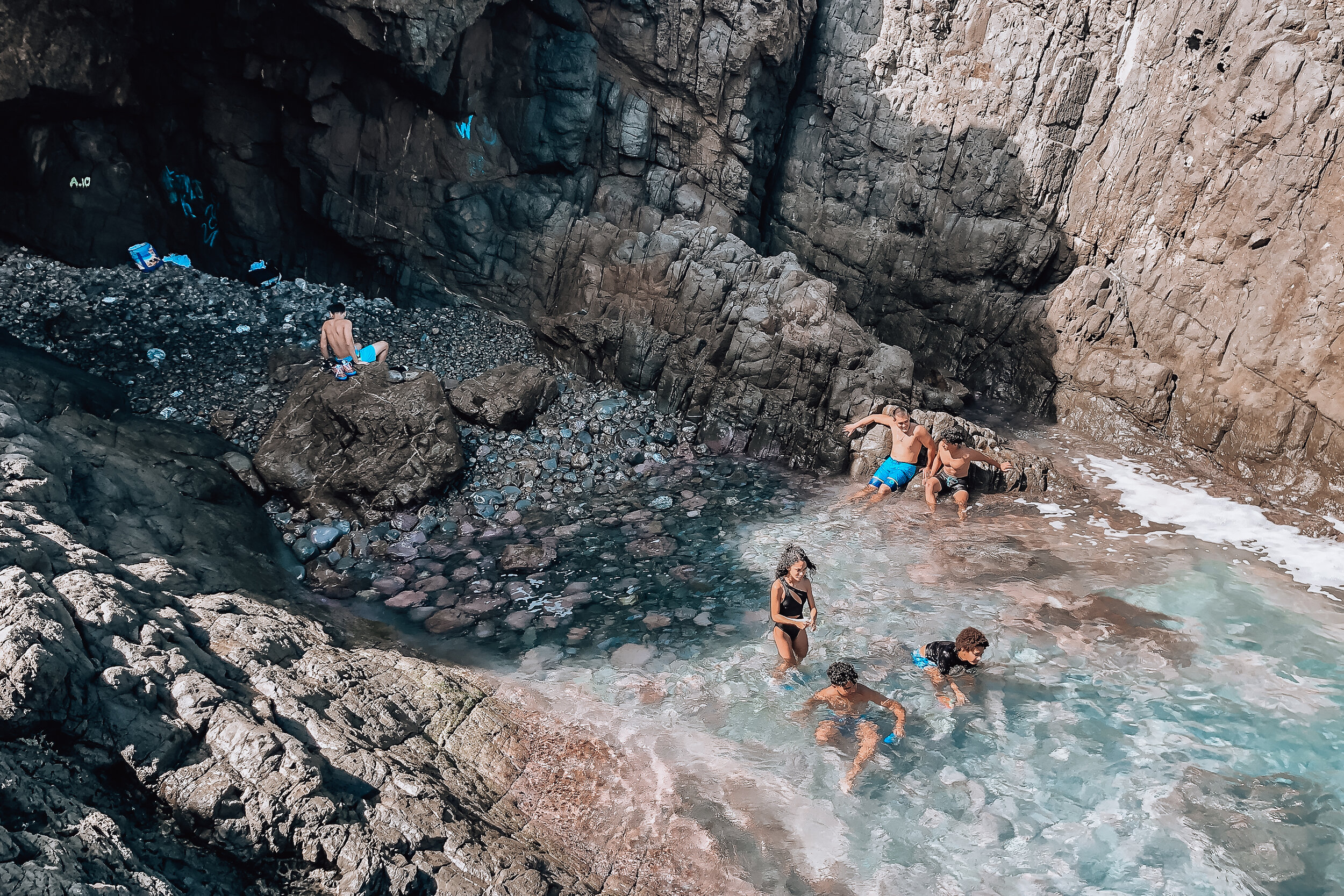
La Zanja
La Zanja is a natural tench-like wave pool nestled along a cliffside and protected from ferocious Atlantic waves by large jagged rock formations. The pool itself is a secluded and unreal place to swim and listen to the ocean.
Getting to La Zanja. Walk down Seven Seas Beach, past Playa La Matita until it looks like you can go no further. From here there will be a trail leading into the tree-line. The trail forks at multiple points but all lead to a road. Take the road ending at a stoney beach. At the stoney beach, walk to the left until you see a trail leading up the hill and along the cliffside. This trail will lead you to La Zanja. From start to finish, it takes about 1 hour to reach.
Safety
Bring water shoes & wear shoes with good soles while hiking on the rocks.
Be very careful on the rocks and of waves
Be mindful of the current within La Zanja.
Restaurants
El Pescador. Located in Parque Las Croabas, this is one of our favorite places to dine at for seafood and Puerto Rican dishes. Come here for a pan fried red snapper, the stuffed mofongo, creole crab salad, jumbo shrimp and anything with conch.
Las Vistas Cafe. A hidden gem and easily the best brunch spot in the area. The restaurant is located on the roof of a house with surrounding views of Las Croabas. Everything is handmade and takes a little longer but is well worth the wait. Try the fresh fruit salad and juices, strong coffee and brunch dishes like the French toast with bananas and coconut or eggs Florentine on a arepa.
La Estacion. A former gas station turned into an open air jungle themed restaurant offering grilled and smoked meats and seafood specials.
Getting Around Las Croabas
Getting around Las Croabas can be difficult without a car. There are no Ubers and are very few taxis. If you need one, call this number to be transferred to a driver: 939-644-2817
Culebra
Culebra is a tiny island half way between Las Croabas and the US Virgin Islands. Things move a little slower here making it a great place to relax and appreciate life. The island has a small town with great restaurants, is home to multiple nature reserves and a variety of beaches.
Getting to Culebra
By Ferry. Take the Por Ferry in Ceiba, about 1 hour from San Juan. The best way to get here is by Uber or Taxi. Either cost between $60 and $100. The ferry operates on a strict schedule. You need to buy tickets at least 1 week in advance, especially if traveling on a weekend. Round trip tickets cost approximately $12. The ferry ride lasts about 45min. The ferry also operates between Ceiba and Vieques
By Air. This is the quickest way to visit Culebra. Book flights on a puddle jumper through Cape Air or Seaborne Airlines. Flights take less than 30min and can cost between $200 and $300 round trip. Due to cost, we’ve opted for the ferry but plan to splurge on flights one time for the experience of it. Both of these airlines also operate on islands across the Caribbean.
Getting Around Culebra
By Golf Cart or Jeep. Renting a vehicle is expensive but is worth the price if you’re only visiting for a couple of days. There are two rental companies on the island, Jerry’s Jeep Rental and Carlos Jeep Rental. If you plan to rent a vehicle, call ahead and book it at least 1 week in advance. Golf carts cost $80/day. Jeeps cost $120/day.
By Bike. There are no official bike rentals on the island however after asking around, we were given the numbers of locals that have bikes to rent. Call Mitzy at Culebra Concierge 787-742-3000.
On Foot. Though Culebra is a small island, getting around on foot outside of the town is difficult but not impossible. Many people are friendly enough to stop and give you a ride. Carry a flashlight when walking at night.
Things to Do
Swing from the Bridge. Swing from the rope tied to the bridge into the canal. Use the metal rod stored alongside the bridge to to retrieve the rope. Wear water shoes to protect your feet from the mussels.
Watch a Caribbean Sunset. Many of the western beaches like Tamarindo, Punta Soldado or Carlos Rosario are peaceful places to watch the sunset below the Caribbean. Equally, Sunset Grill on the hill is another spot. Make a reservation and come early.
Go Snorkeling. Our favorite time to go is around 10am or an hour before sunset. The sealife seems to be more active during these hours. The best beaches to spot sea turtles, eagle rays, conch and coral are Tamarindo, Carlos Rosario and Playa De Cascajo. Rent snorkel gear from Blue Water or Culebra Divers. Both are located next to the ferry terminal. Use reef safe sunscreen like Sunbum when snorkeling.
Visit the Beaches
Culebra has many great beaches all worth visiting for different reasons. There are white sand beaches, rocky beaches, remote beaches, unofficial nude beaches, beaches to snorkel at and beaches to look for conch shells.
Flamenco Beach. This beach has powdery white sand and blue turquoise waters perfect for swimming. It’s famous for its graffitied tanks. There are plenty of amenities: parking, umbrella/chair rentals, a campground and small kiosks with food & drinks.
Parking Fee $10
Umbrella/Chair Rental $5 each
Campground Fee $20/day
Zoni Beach. This beach is just as beautiful as Flamenco, easy to get to get to and not usually that busy. Outside of free parking, there are no amenities.
Playa Melones & Sardinas. Located about 20min on foot from downtown and easy to reach. These stone covered beaches are calm places to swim and snorkel. There is not much living coral near shore however we saw divers a couple hundred feet out.
Playa Tamarindo. A long stone covered beach amazing for snorkeling! There is a mix of living and dead coral and fields of sea grass. We’ve spotted sea turtles and eagle rays here multiple times!
Playa Carlos Rosario. A semi-remote beach equally great for snorkeling and sunsets. A trail from the parking lot at Flamenco leads here. We were warned to stay on the trail due to landmines left behind from military activity during the 1950s.
Playa Punta Soldado. A rocky beach great for finding conch shells. You’ll find a lot of fragments and occasionally a whole shell. Supposedly a good spot to snorkel though we’ve never tried here.
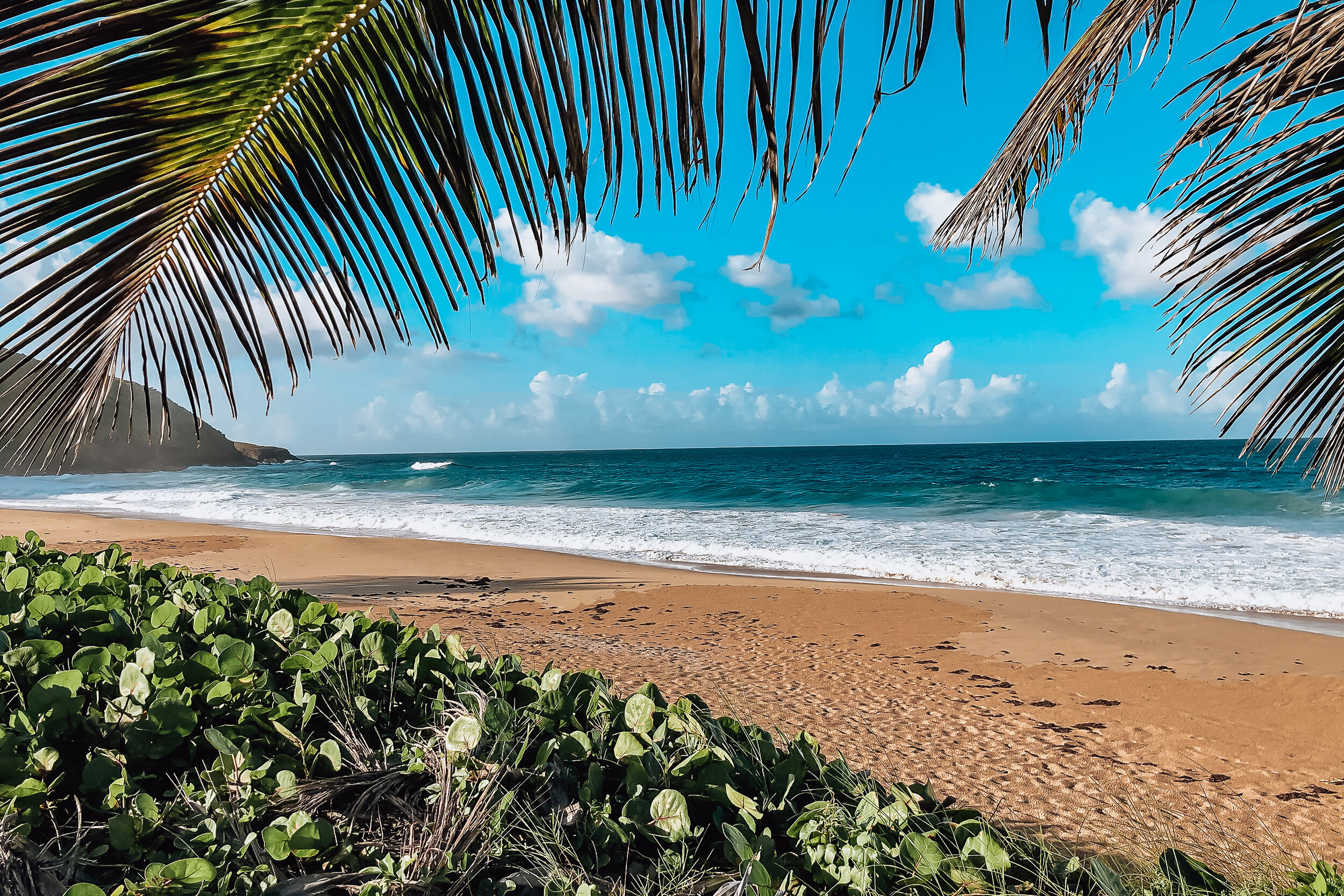
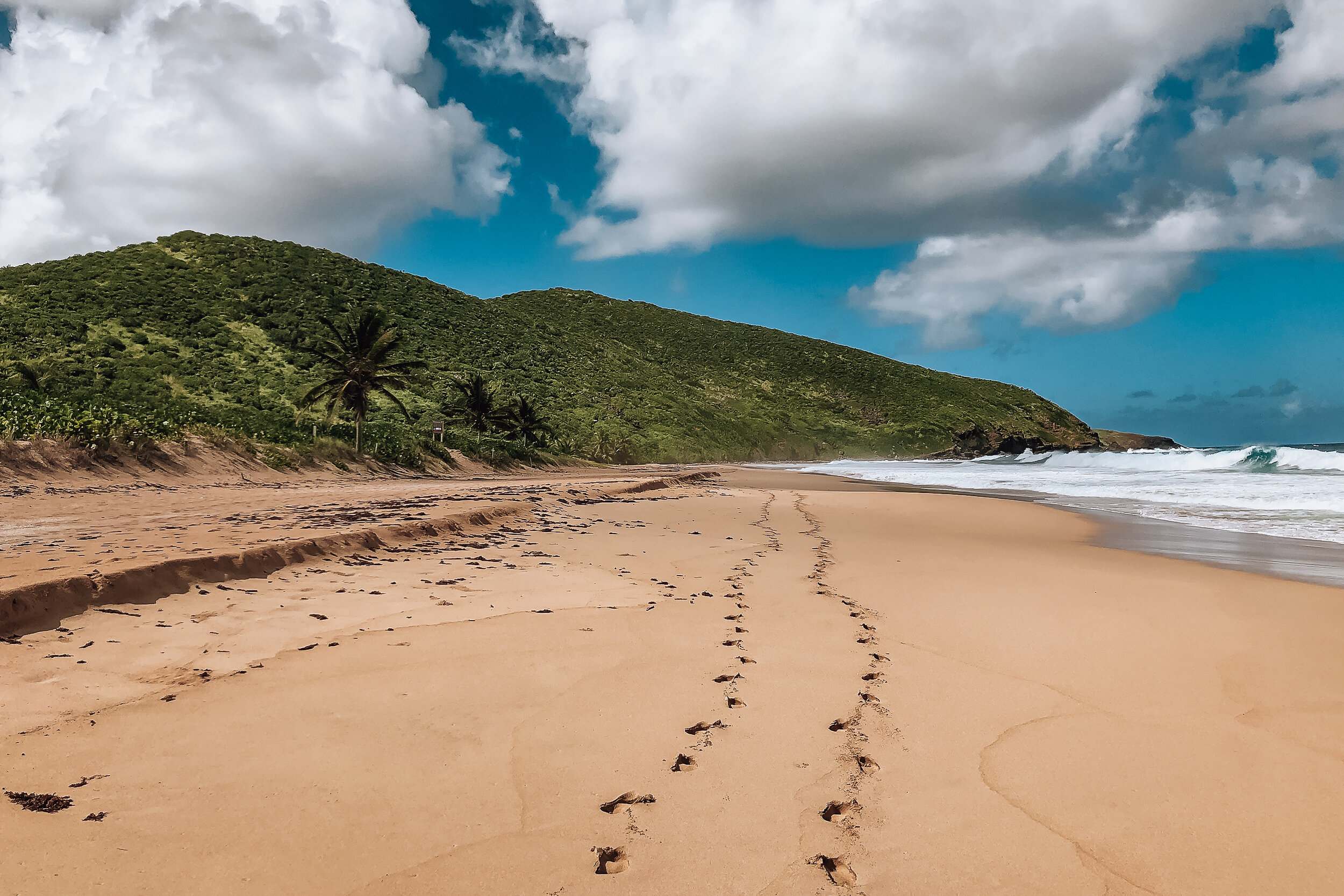
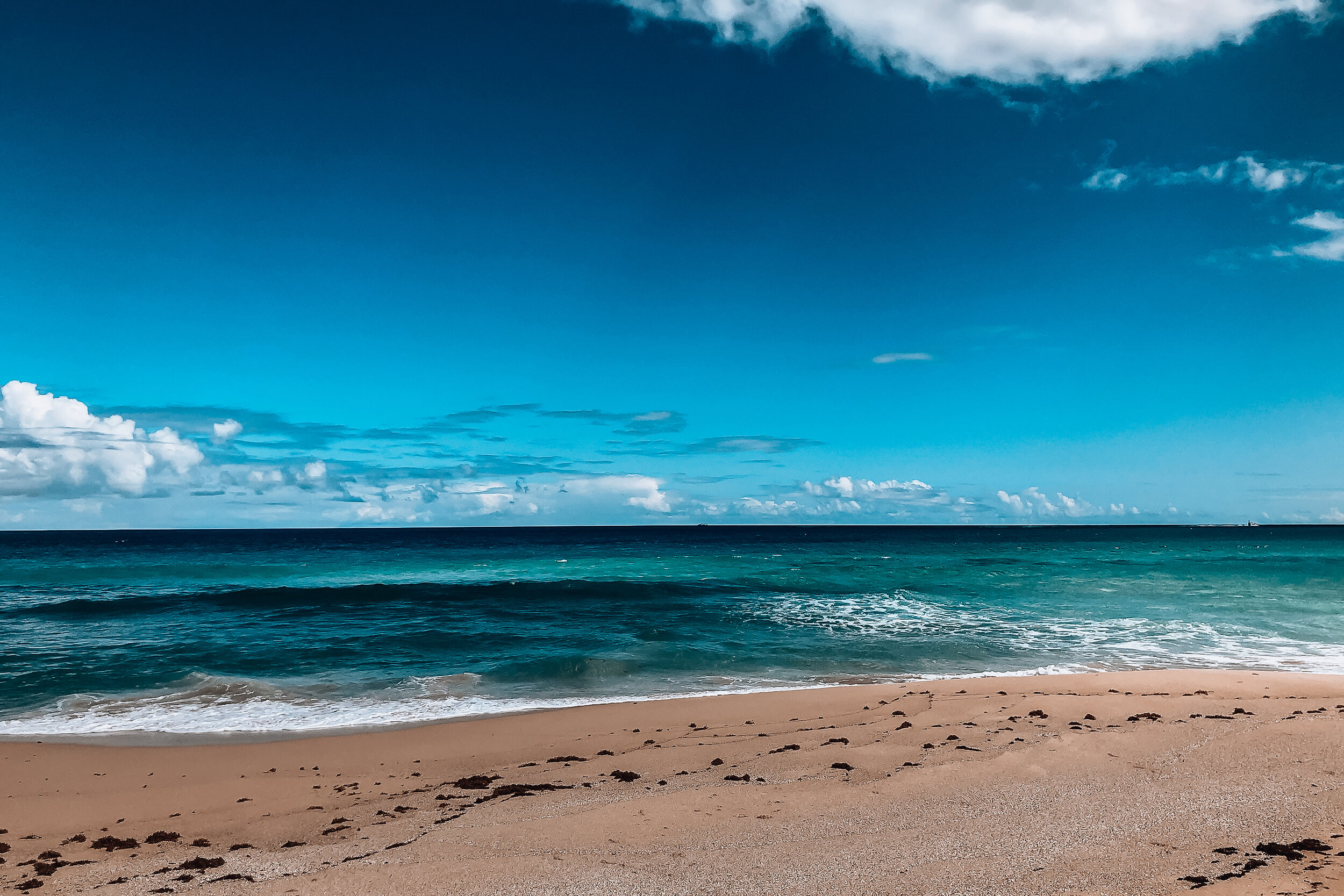
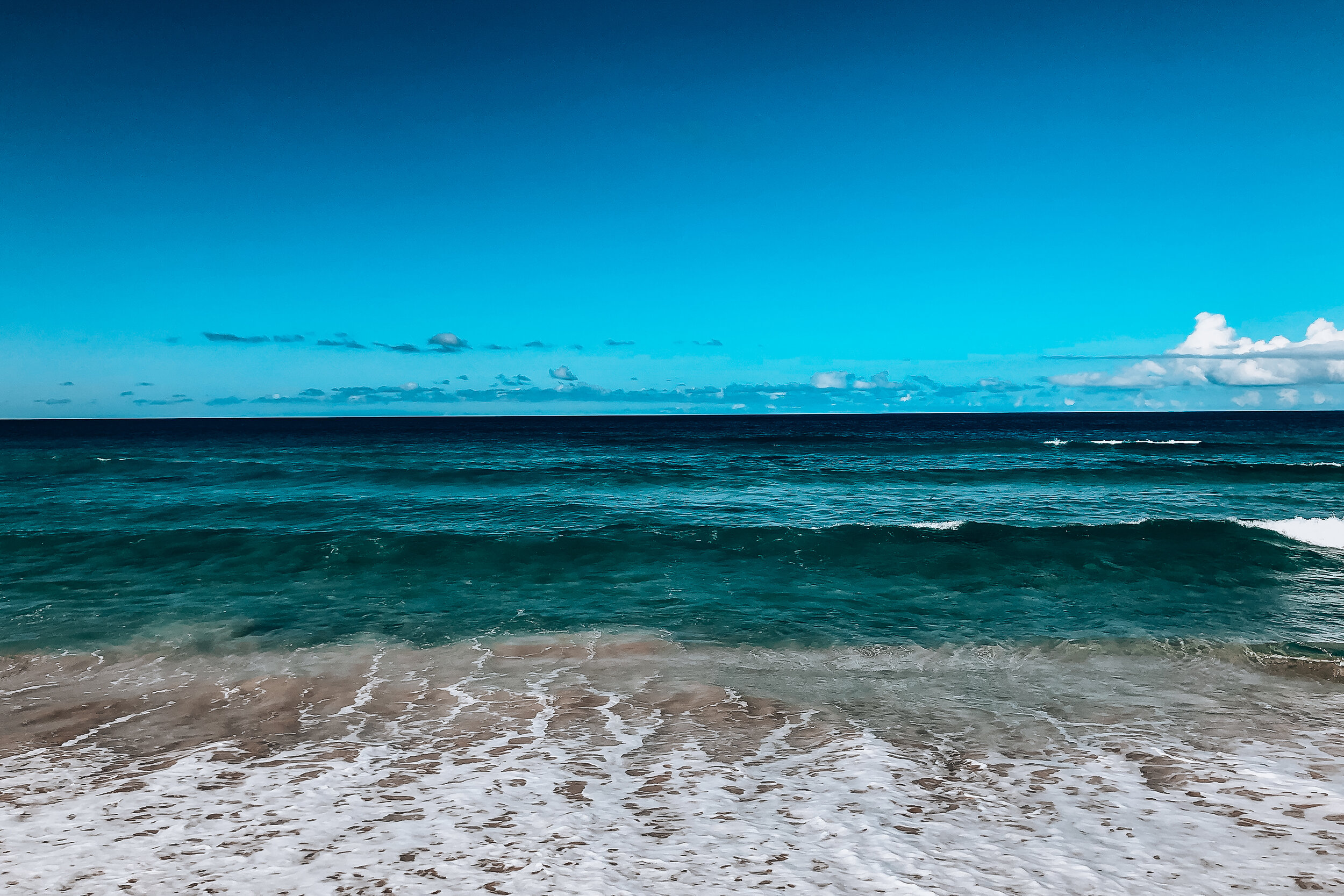
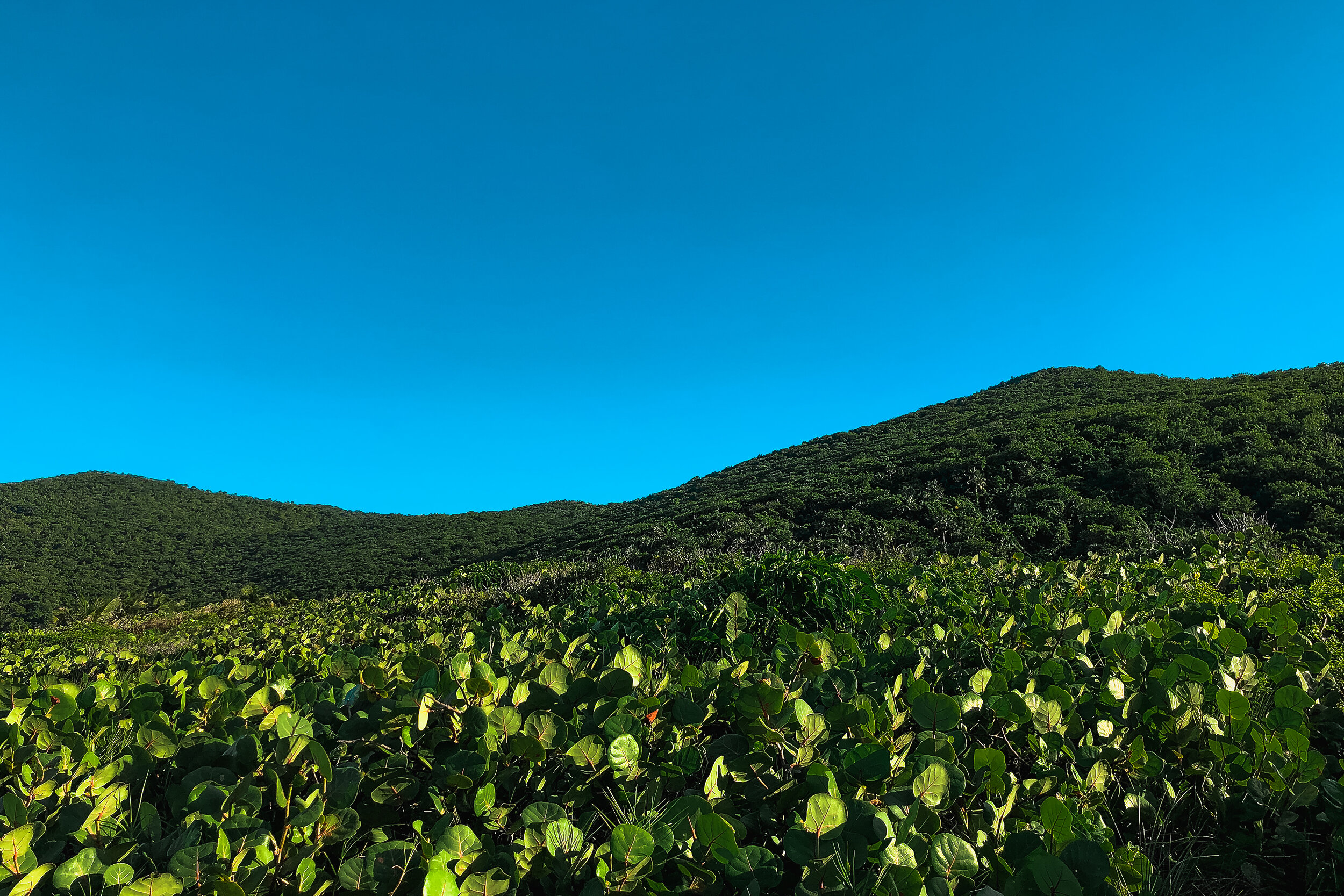
Playa Resaca. This beach is as much about the journey as it is the destination. After a rigorous hike, you’ll reach a vast beach that you’ll likely have to yourself the entire day. The only swimmable area is the shallows at the far east end of the beach. Because it’s so remote, it’s the perfect place to get naked ;)
Getting Here:
Follow a paved road up the hill past the airport. There will be a parking lot at the top. Walk through the waist high grass behind the sign to locate the trail.
The further you descend, the more rigorous the trail gets. You’ll have to walk over boulders and duck under tree branches. We recommend wearing pants, hiking shoes and bringing a stick to knock away spider webs and thorny plants.
The trail ends at a mangrove forest just before the beach. There will be pink and orange ribbons, nautical debris and water bottles strung along the trees guiding you through it. Follow these markers, even if you think you’re on the path, or you will get lost!
The final stretch leads through a thicket of beach grape trees ending at a lone palm tree overlooking the beach. From the parking lot, it should take you 45min to reach Playa Resaca. Plan to leave the beach at least 1 hour before sunset.
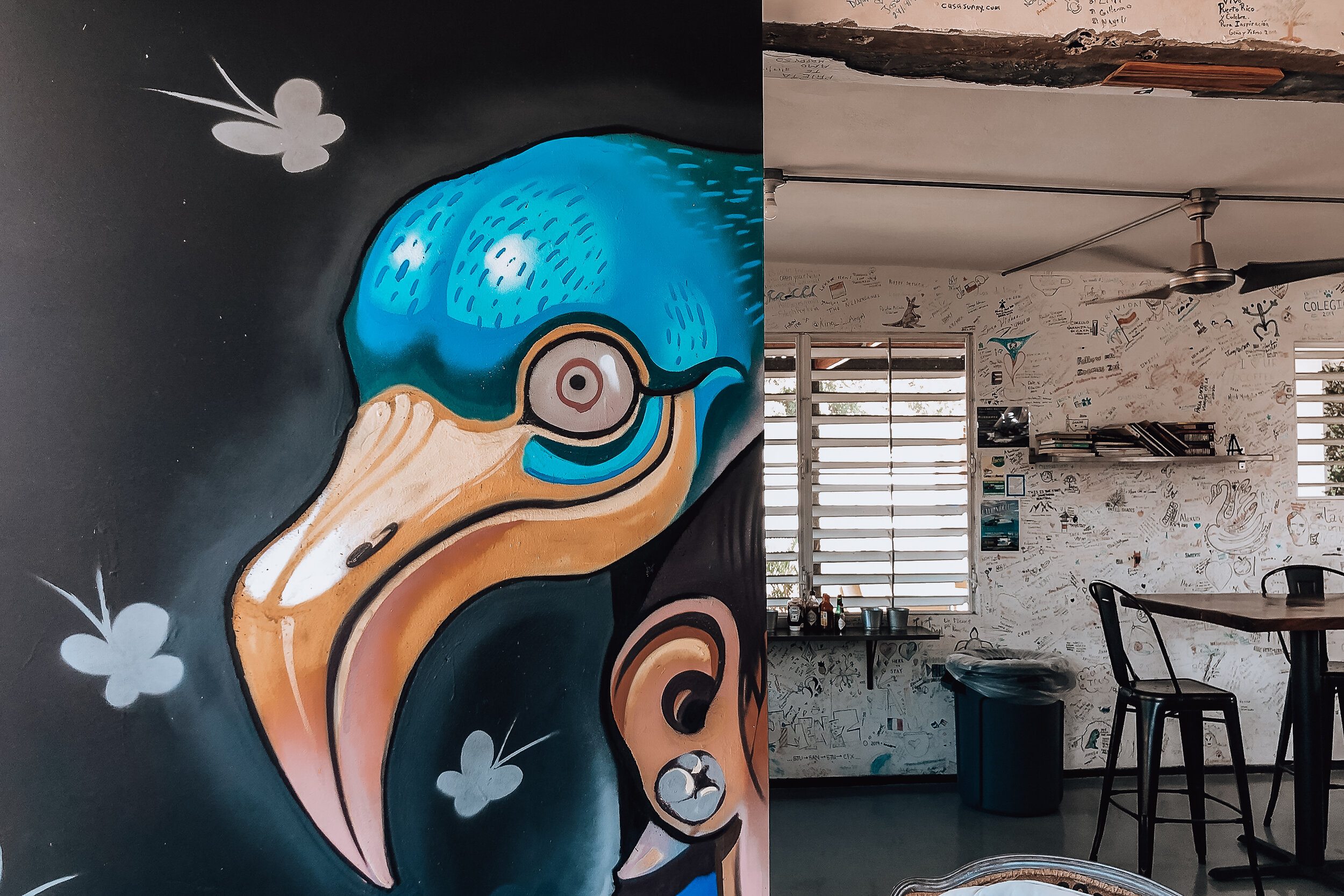
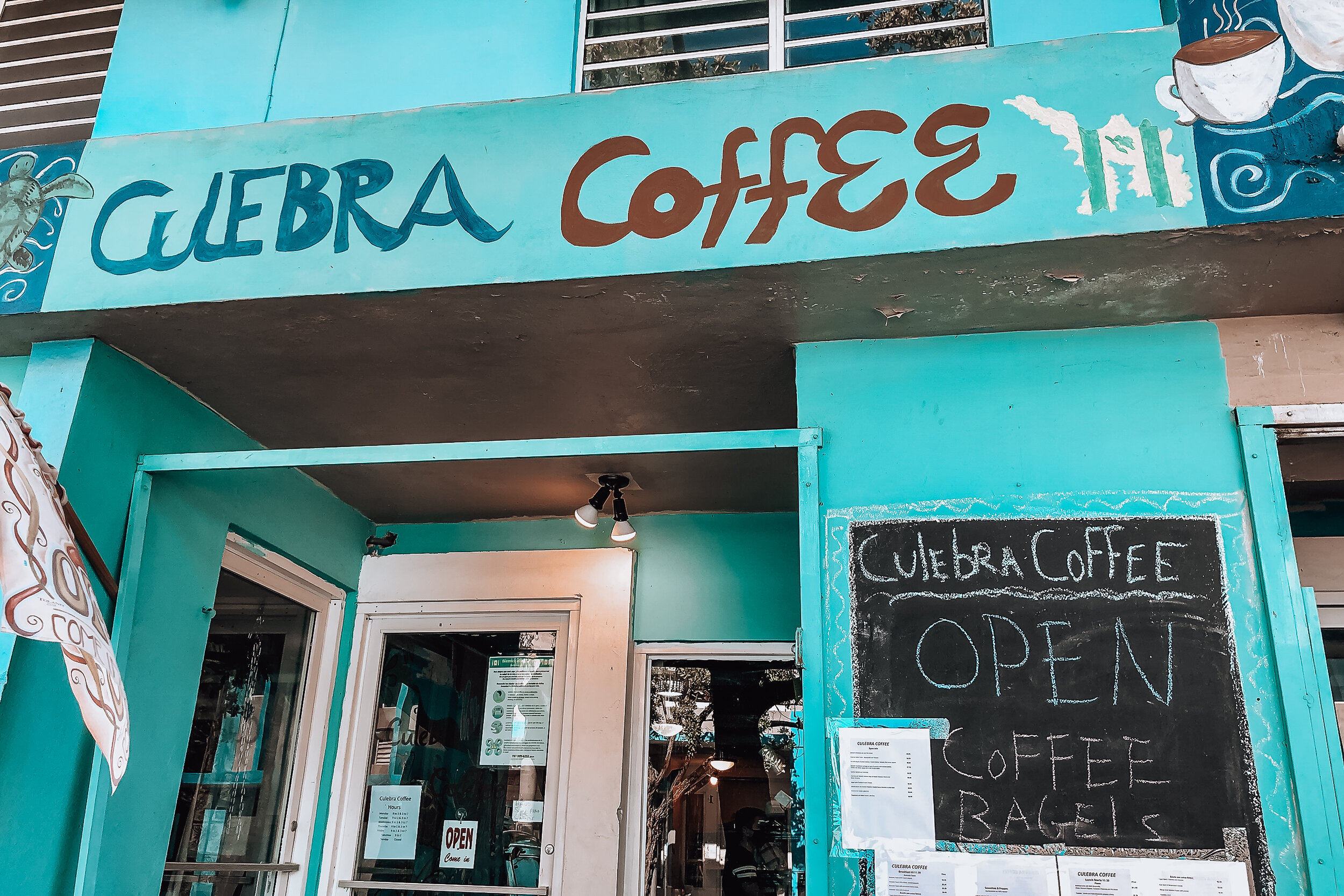
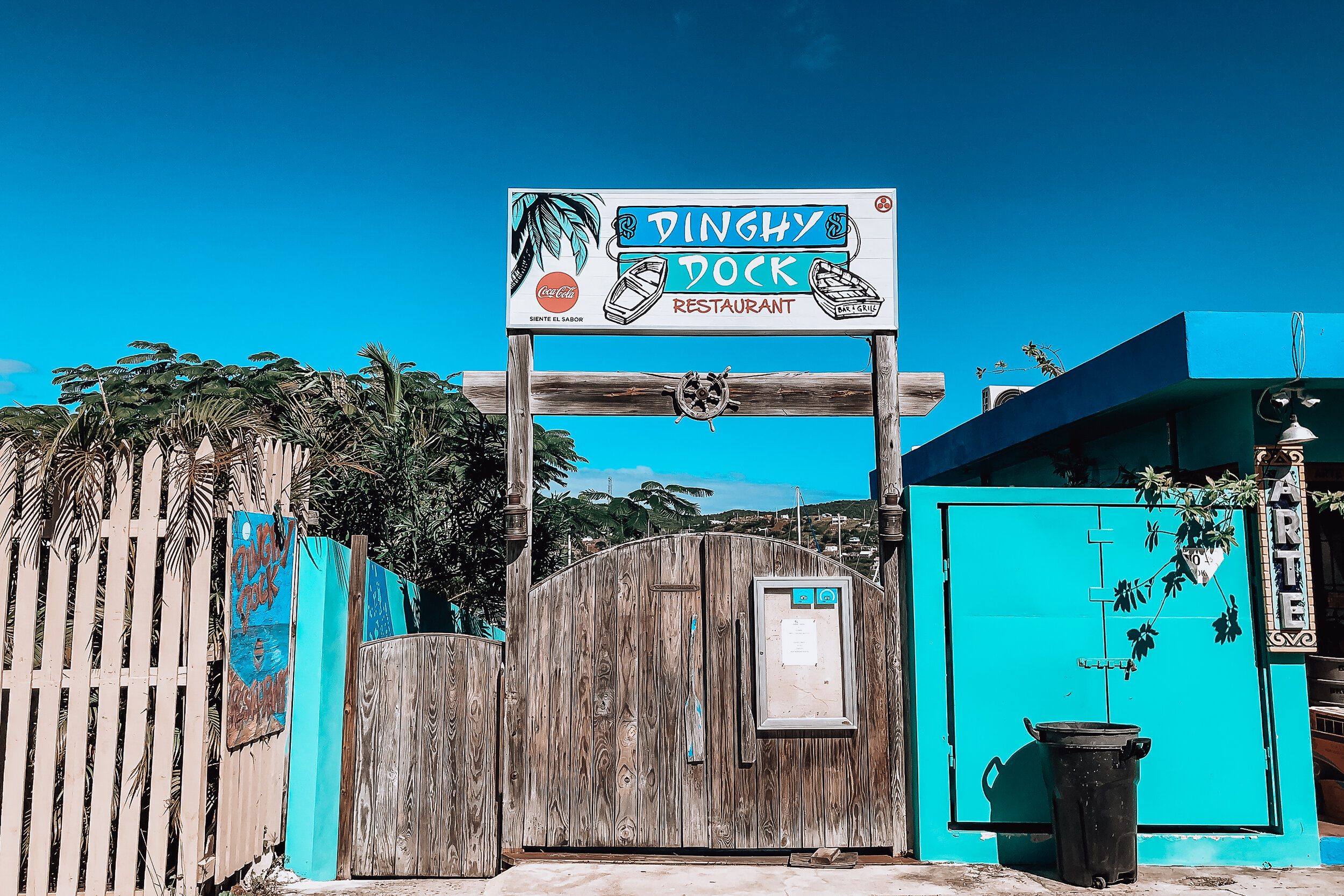
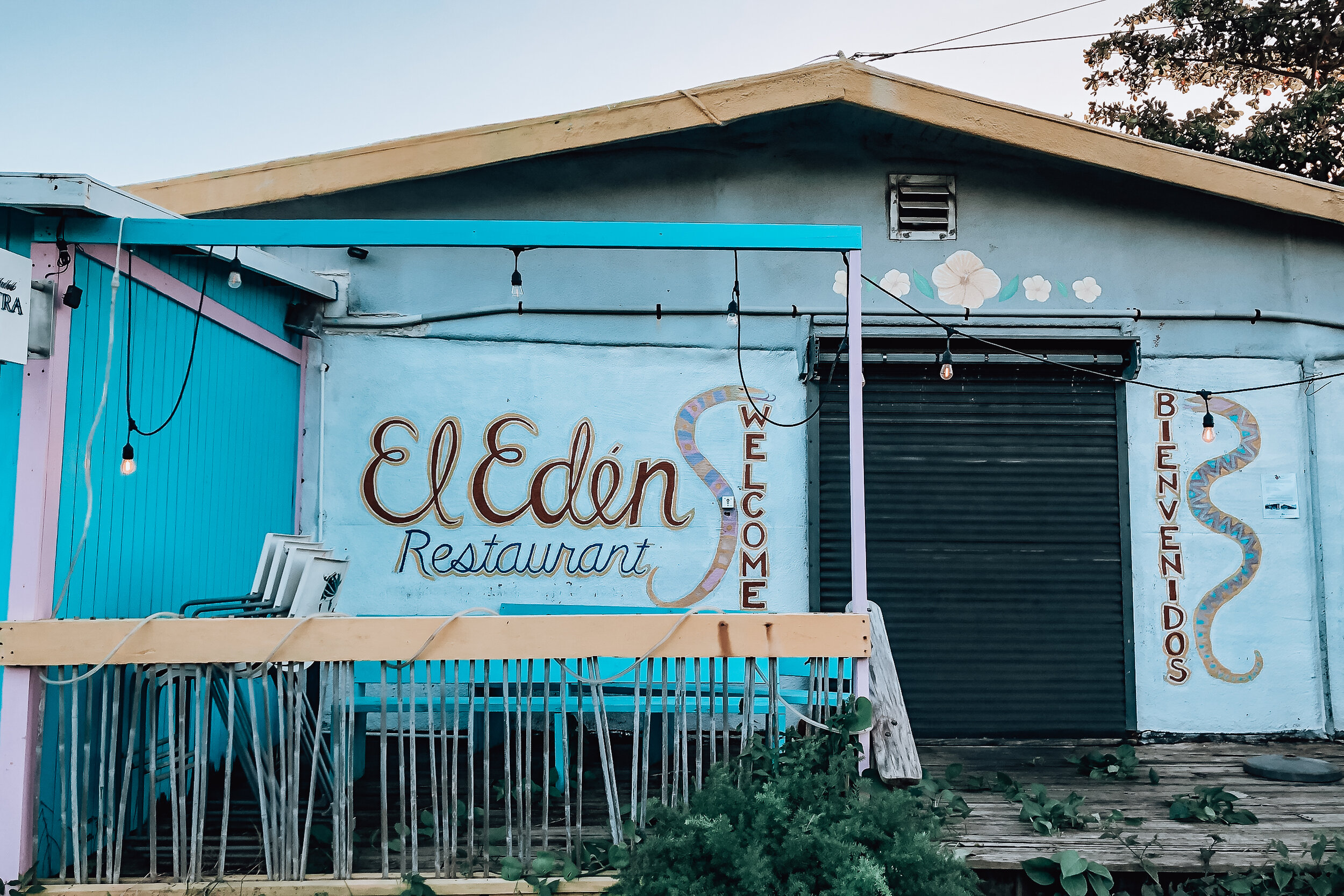
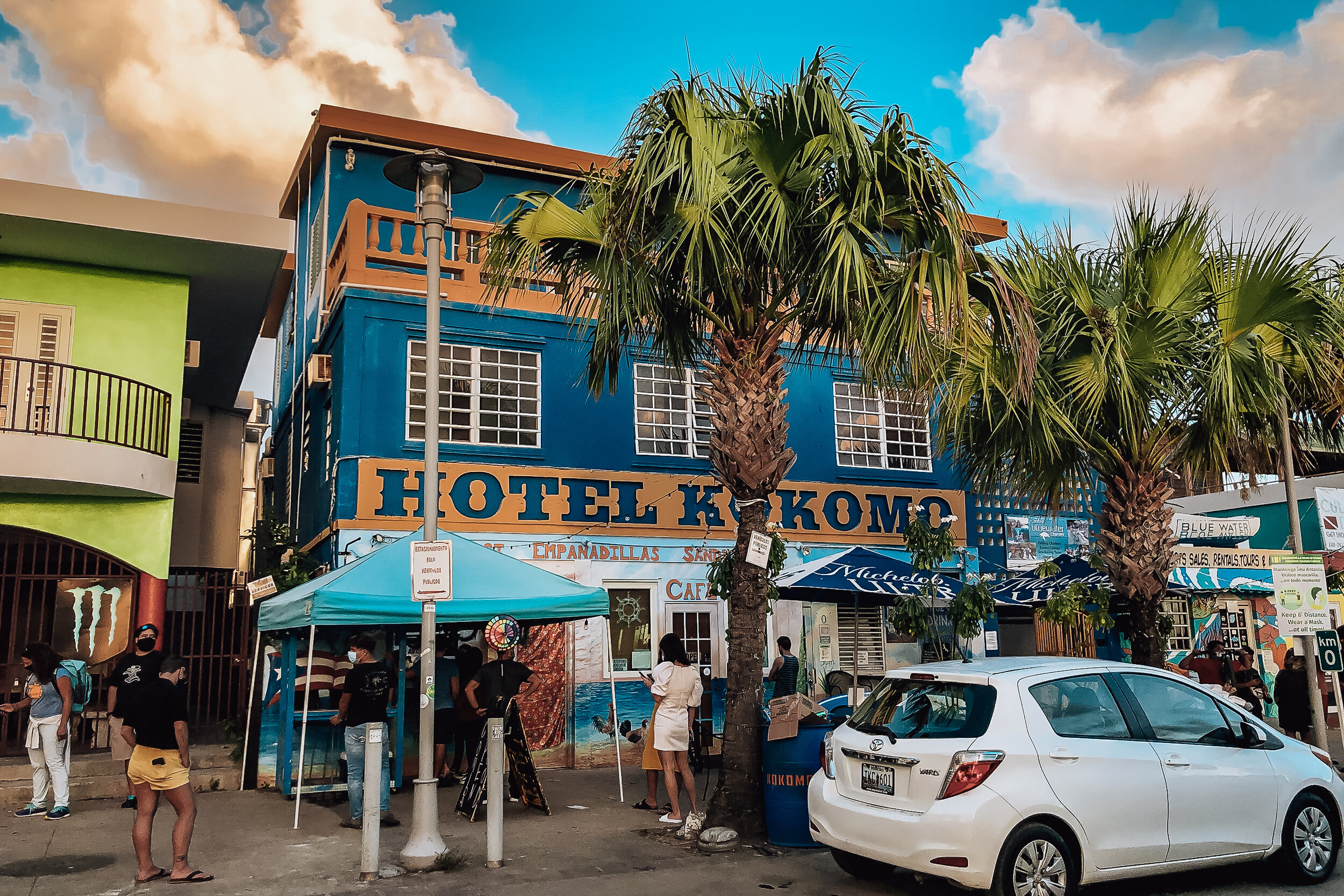
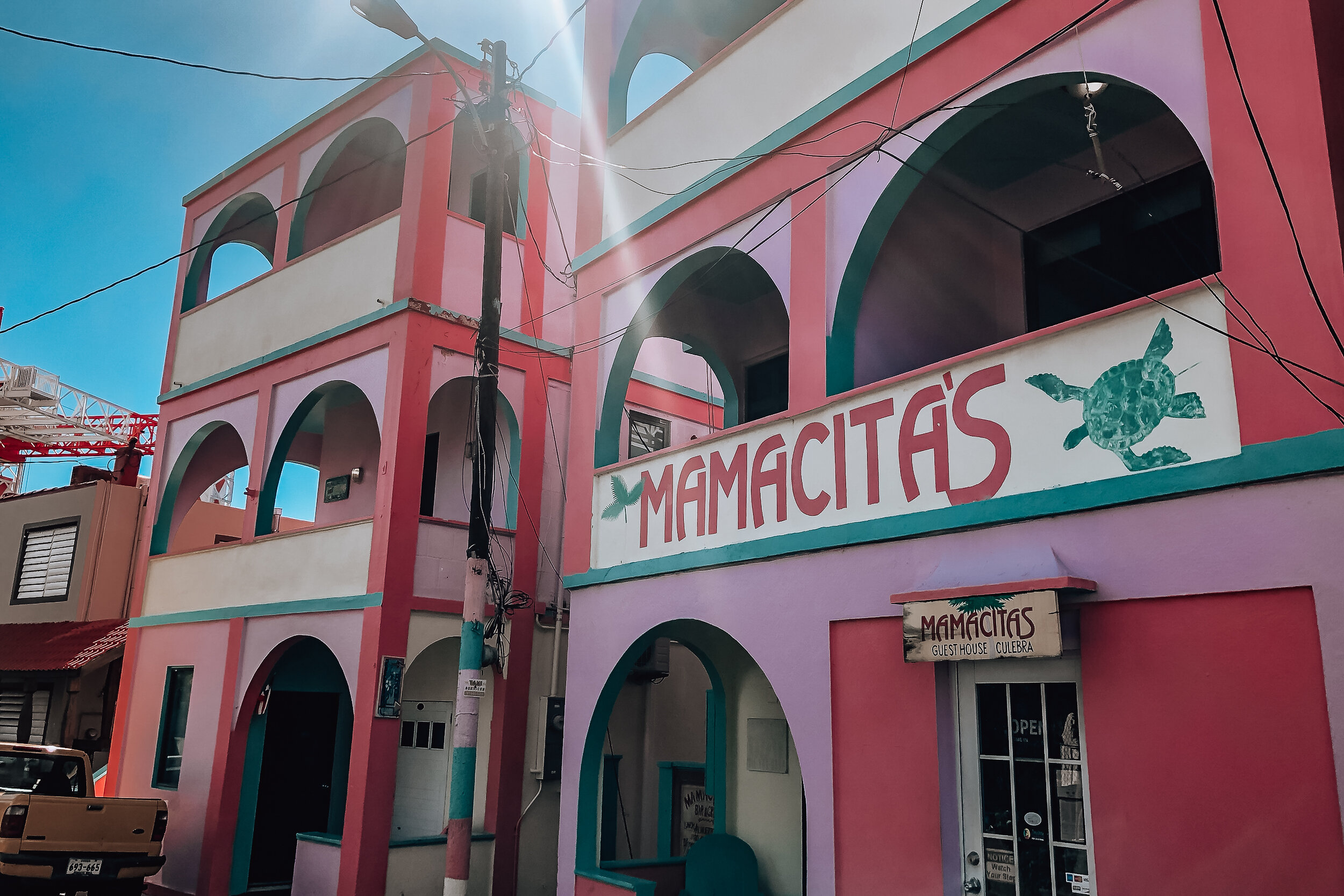
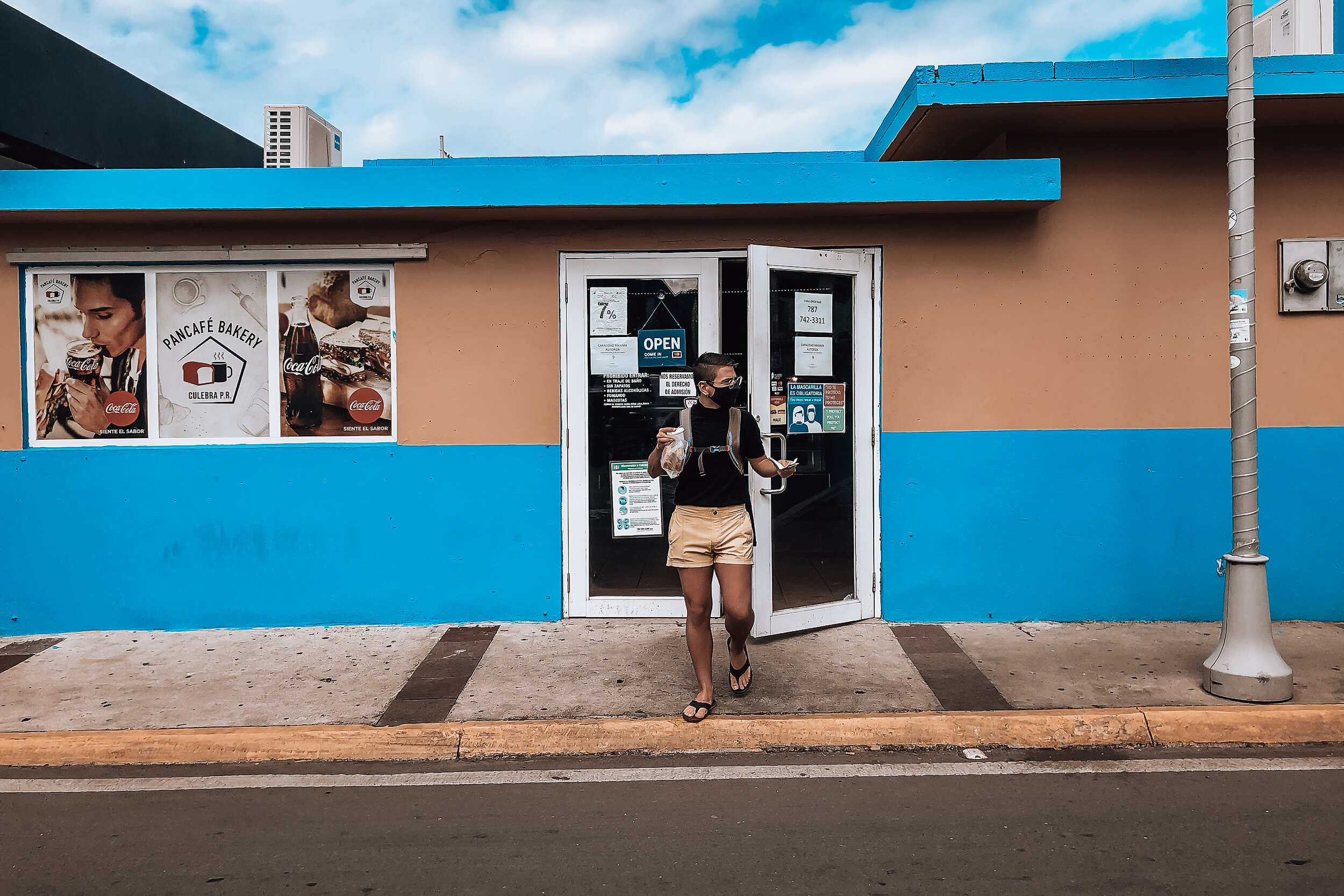
Restaurants
Black Flamingo Coffee. Our favorite breakfast spot on the island. Come here for their coffee, homemade sourdough toast and breakfast tacos.
Culebra Coffee. A coffee shop selling mango and acai bowls, egg dishes and baked goods.
Dinghy Dock. A lively place to eat directly on the water. It’s open late, serves classic Puerto Rican dishes and has great cocktails. Ask to feed the tarpon!
Mamacitas. A restaurant, bar and hotel along the canal. We’ve dined, drank and stayed here! It has a very social atmosphere.
Restaurant Carscoles. Easily the best seafood restaurant in town serving Caribbean lobster, whole fried fish, carrucho and more. Have the tres leches for dessert.
El Eden. A homestyle restaurant with a nautical interior and wine bar.
Hotel Kokomo. The perfect go-to for an inexpensive meal or quick lunch, especially while waiting for the ferry. We’ve ordered fish sandwiches and empanadas.
Pancafe Bakery. A nice spot to go for sweets, baked goods and morning coffee.
Lococina. Come for the drinks, harbor views and chill vibes.
Good to Know:
Most places accept credit cards however it’s good to have cash. There’s an ATM in town near the ferry terminal.
Make reservations at places you want to eat. Service ends early and places can book up.
Be patient, people and businesses move slower here.
Grocery Stores
There are two grocery stores on the island. Colmado Carniceria Milka, located in town and Colmado Costa del Sol, located next to the airport. Both offer all the basics and necessities of any grocery store. They’re also good spots to buy snacks and drinks for the beach.
For Next Time…
Rainforest Zipline Park. Located in El Yunque, this park offers zipline tours through the rainforest’s lush canopy.
Las Paylas Waterfall. Nearby El Yunque and on private property is a natural river rock slide. An older gentleman who owns the property charges $5 admission. There are no official hours so you have to chance it if visiting. We tried but were turned away.
Visit The Icacos Islands. The Icacos are a key of many small islands with diverse sea-life, species of birds, coral reefs, beaches and marine activities. We booked a tour previously but it was canceled due to high winds.
Fly to Culebra & Camp at Flamenco Beach. We want to experience flying into Culebra. To offset the cost, we’re planning to camp at Flamenco Beach.
Visit Isla Culebrita. An island and nature reserve across from Zoni Beach. It has 6 beaches, tide pools, coral reefs, sea turtles and the ruins of an old light house.
Vieques. Spend a week exploring Puerto Rico’s other major island to see the bio-bays and black sand beach.
San Juan, Puerto Rico
Old San Juan is an enchanting, romantic, vibrant and gay friendly neighborhood of San Juan, Puerto Rico.
Bienvenidos al Viejo San Juan
Old San Juan is an enchanting, romantic, vibrant and gay friendly neighborhood of San Juan, Puerto Rico. The old town is lined with cobble stone streets, colorful colonial architecture, world famous cocktail bars, restaurants serving Caribbean cuisine and playing music during all hours of the day. It is rich in history, flanked by two fortresses and surrounded by a stone wall overlooking the North Atlantic.
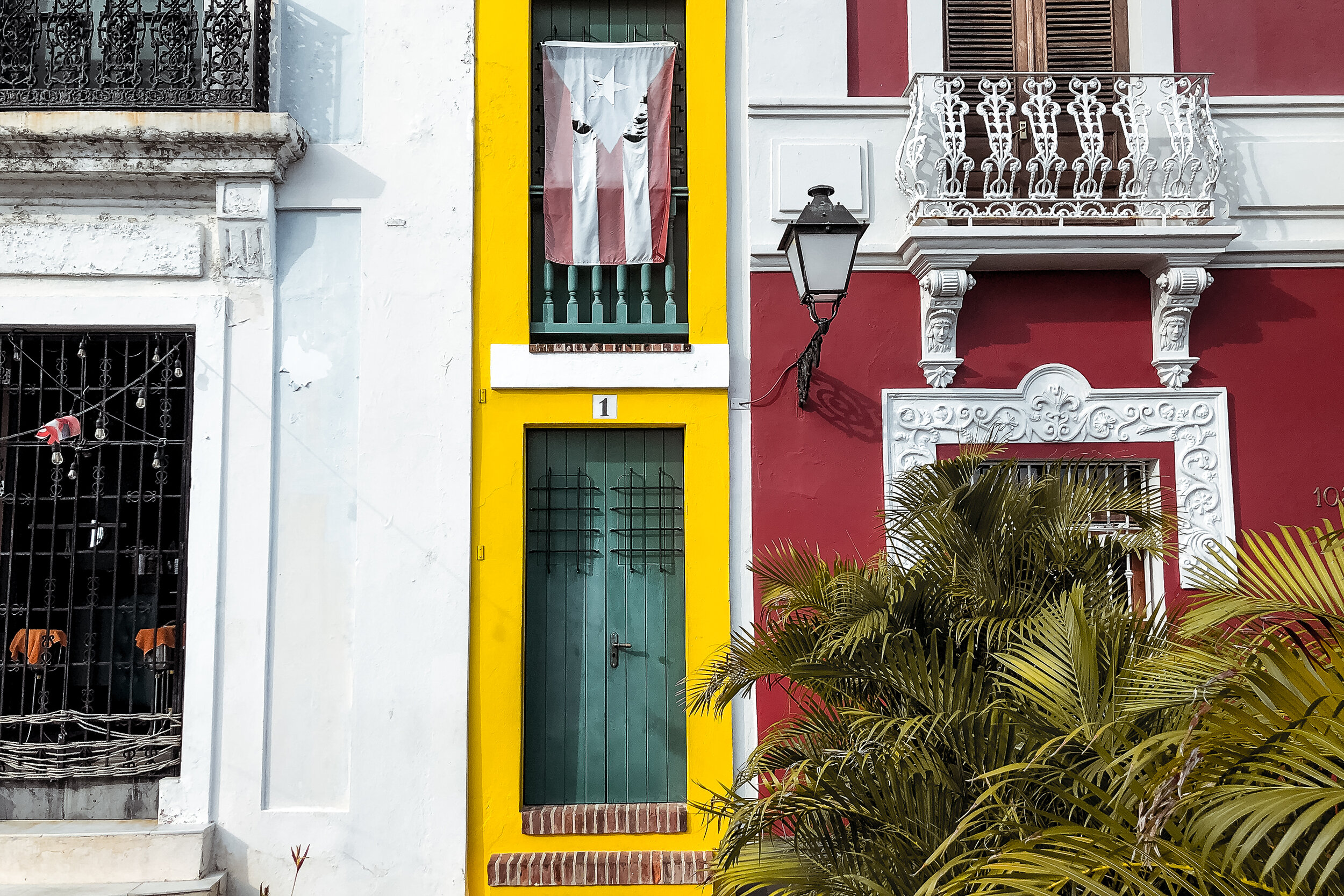
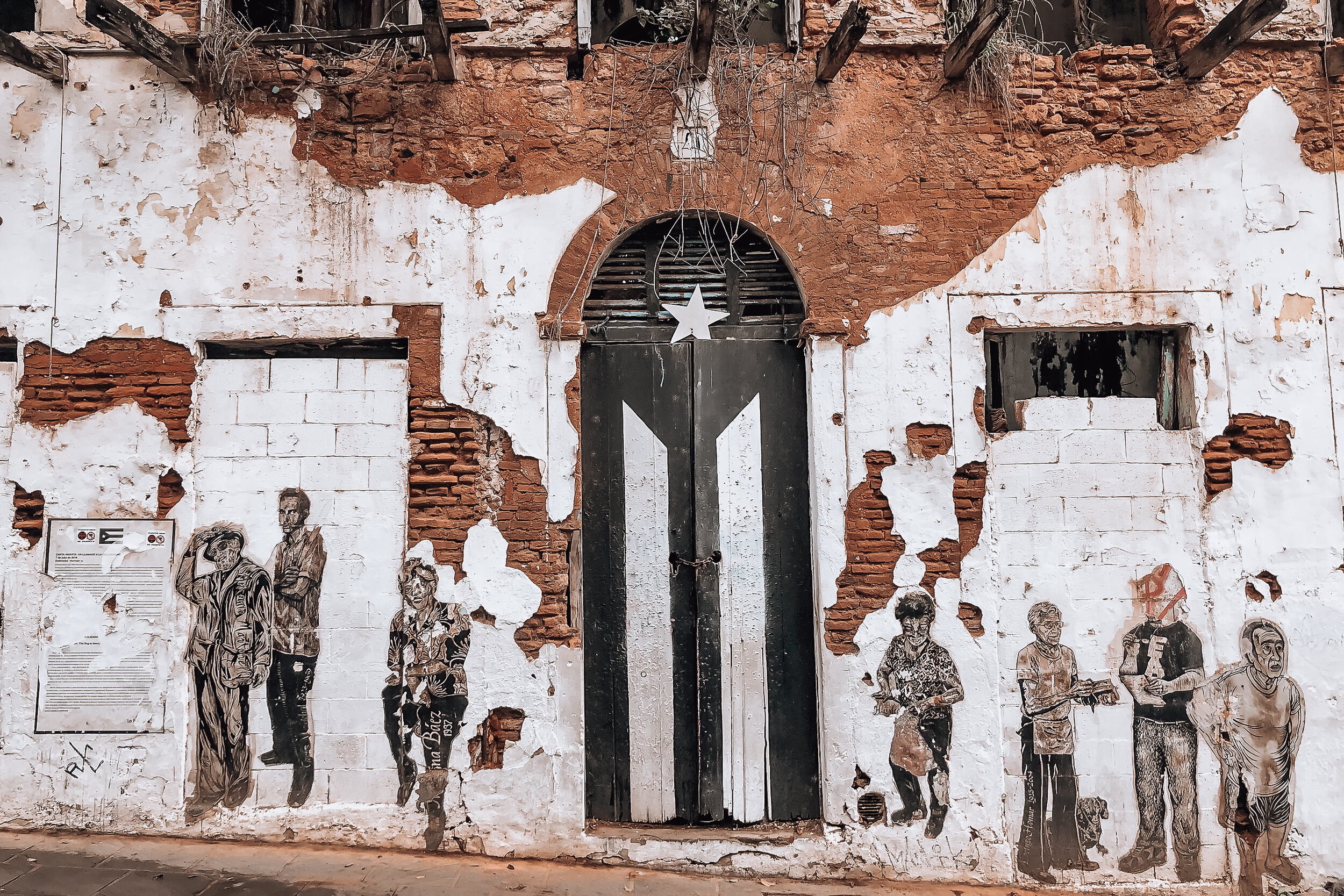
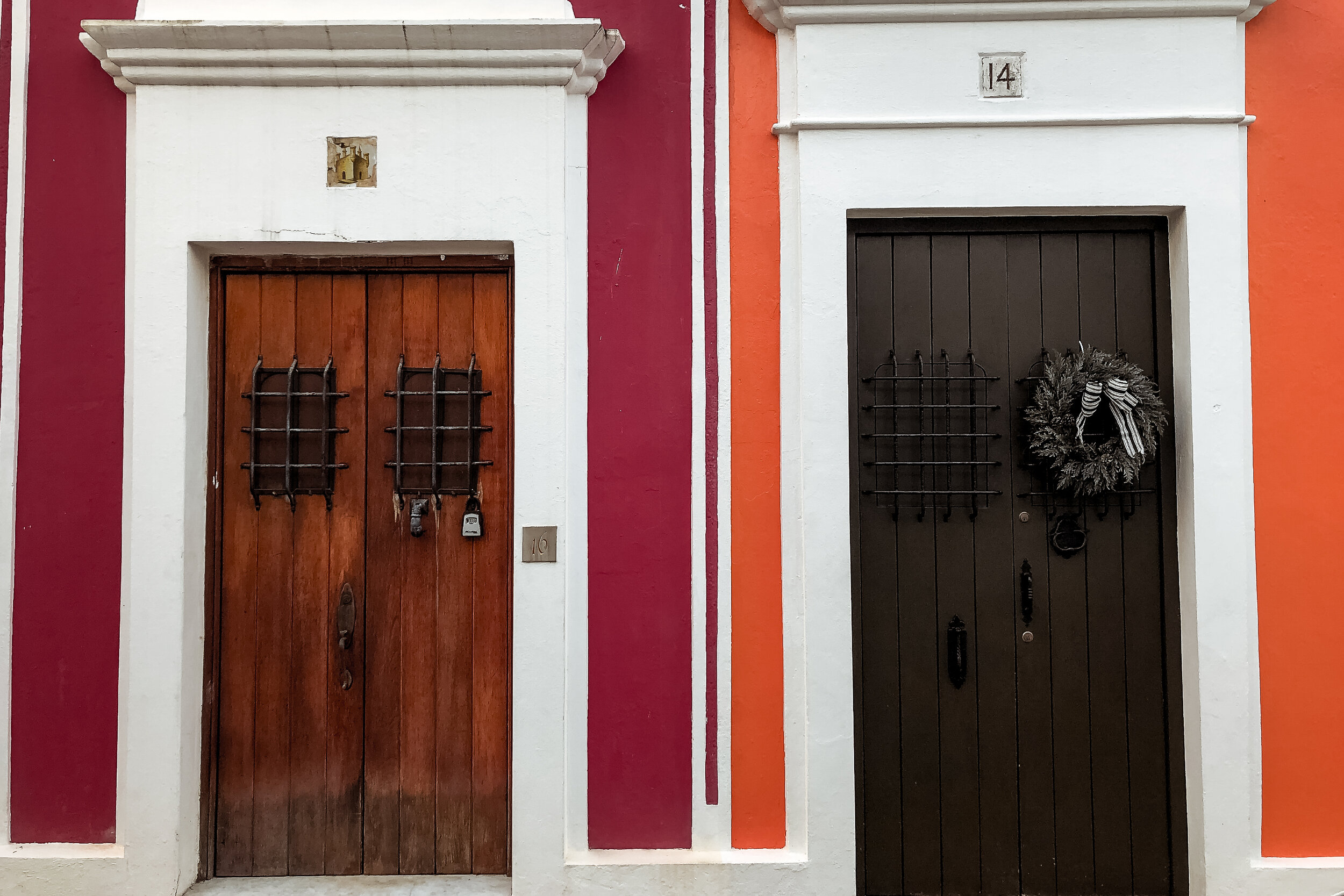
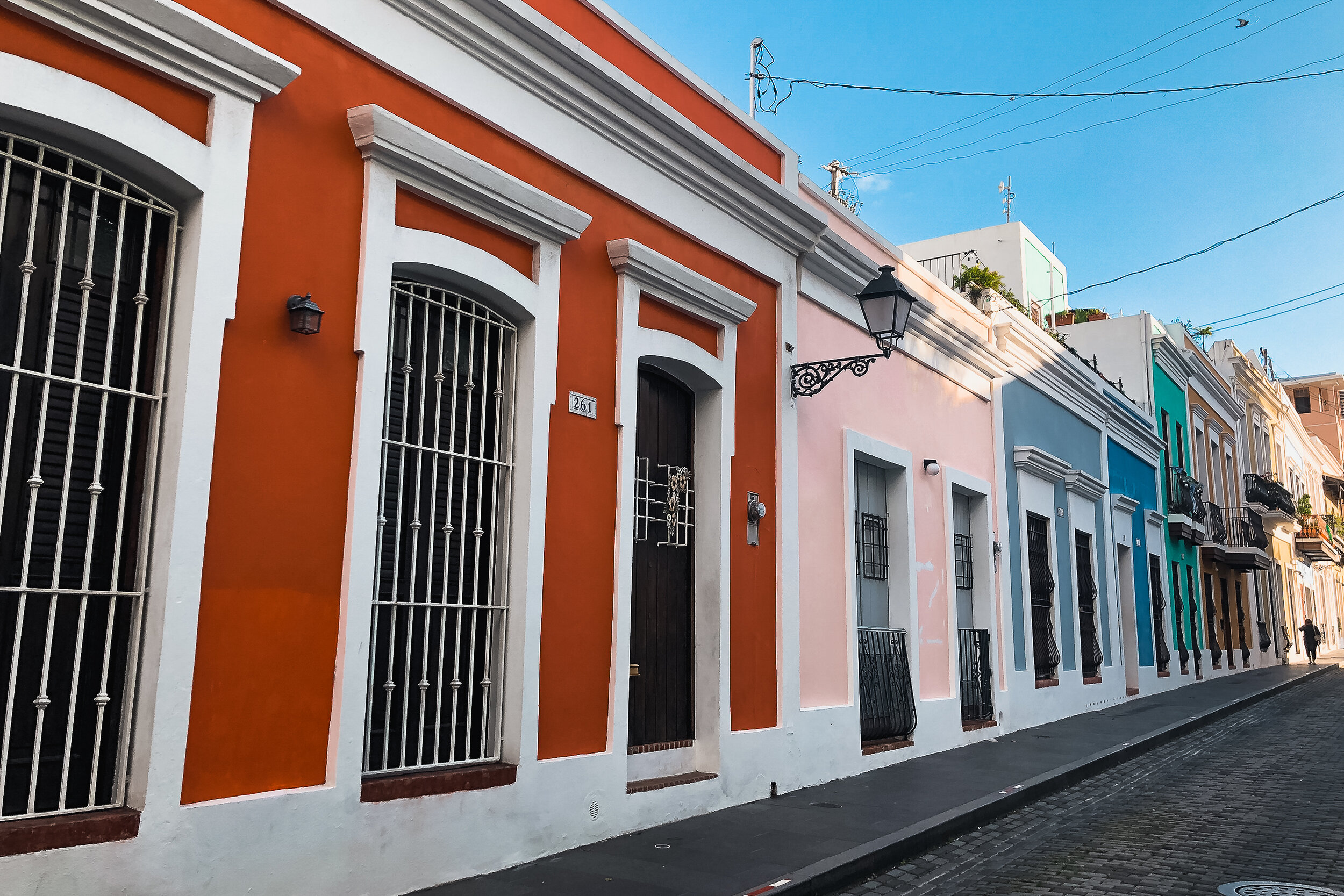
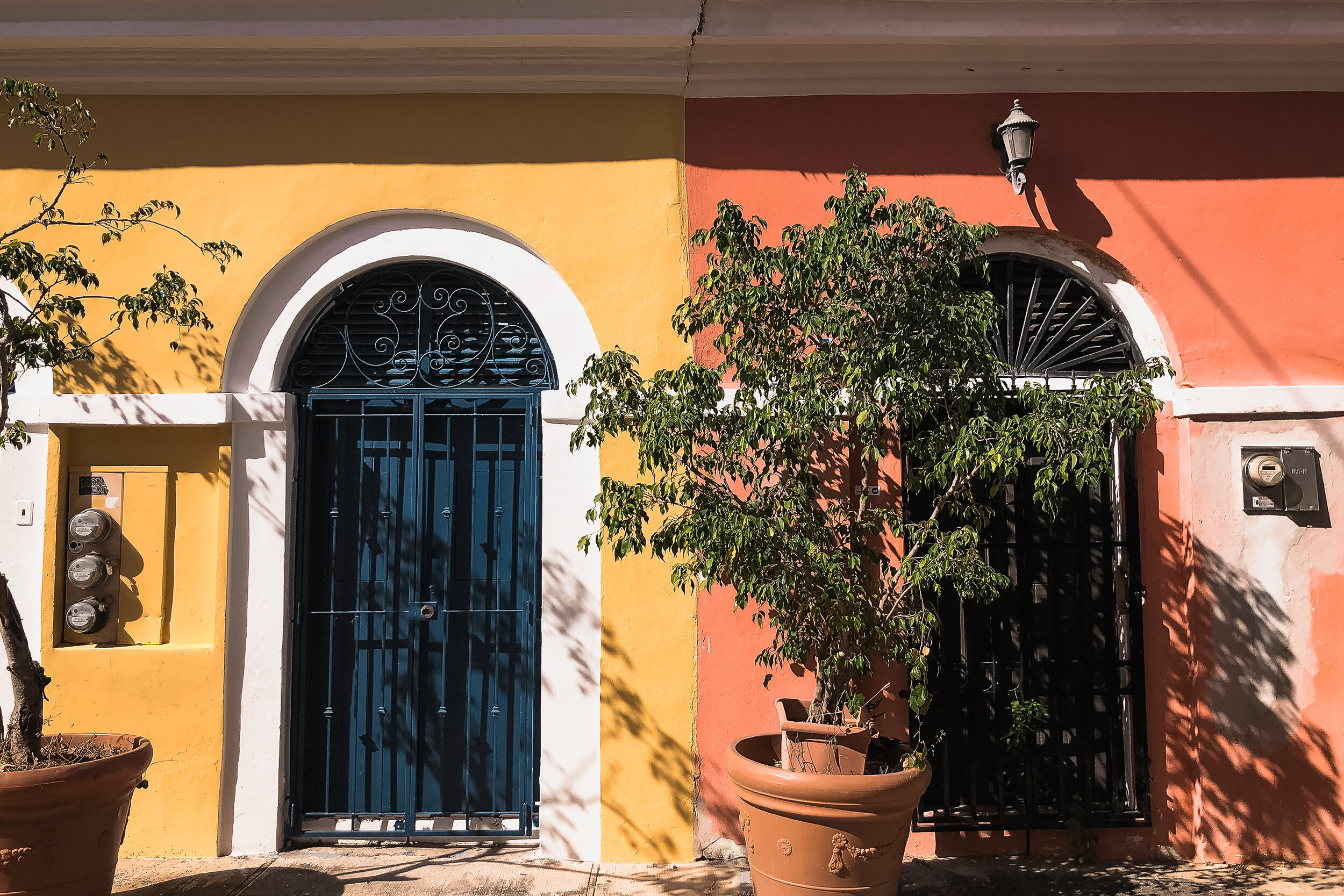
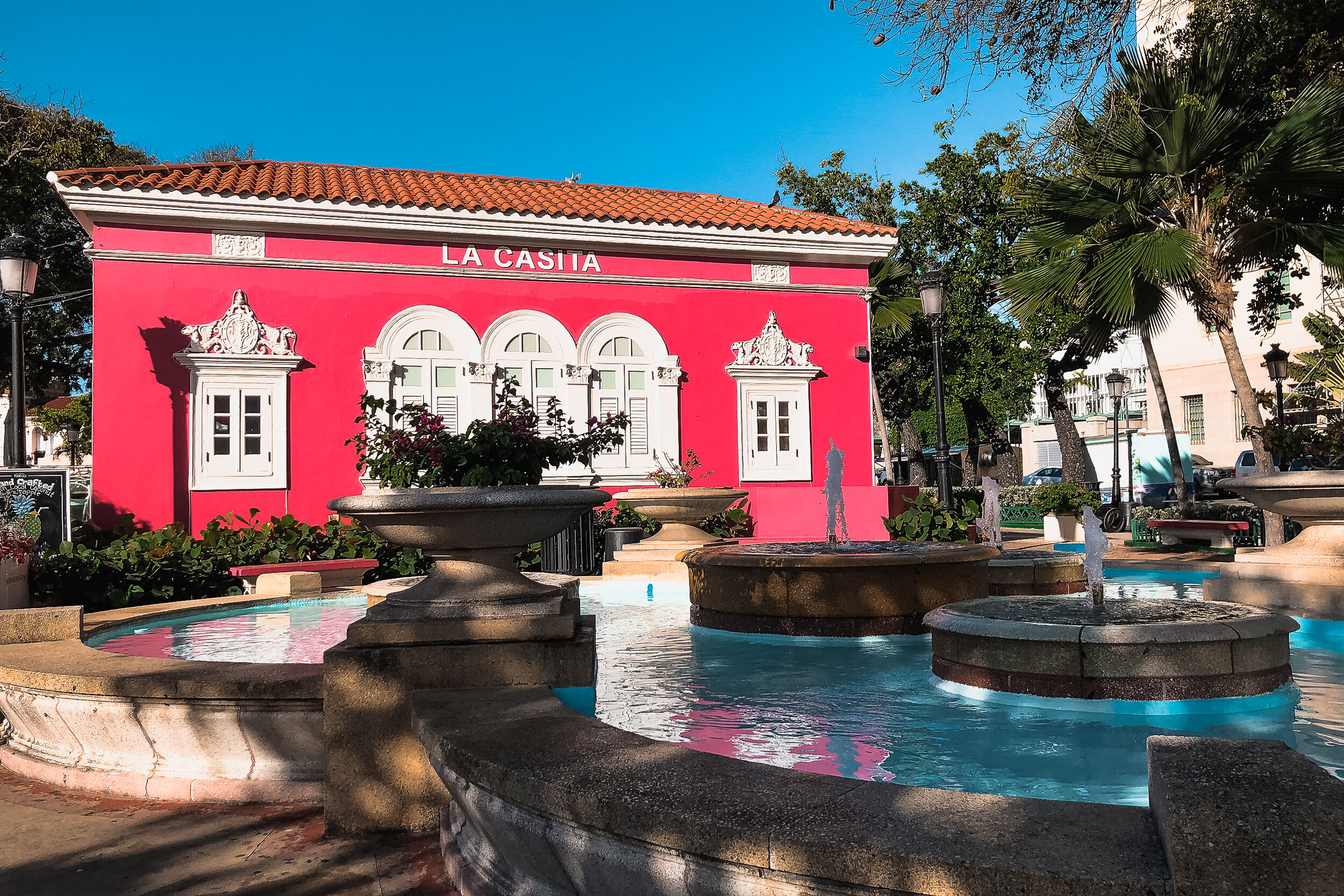
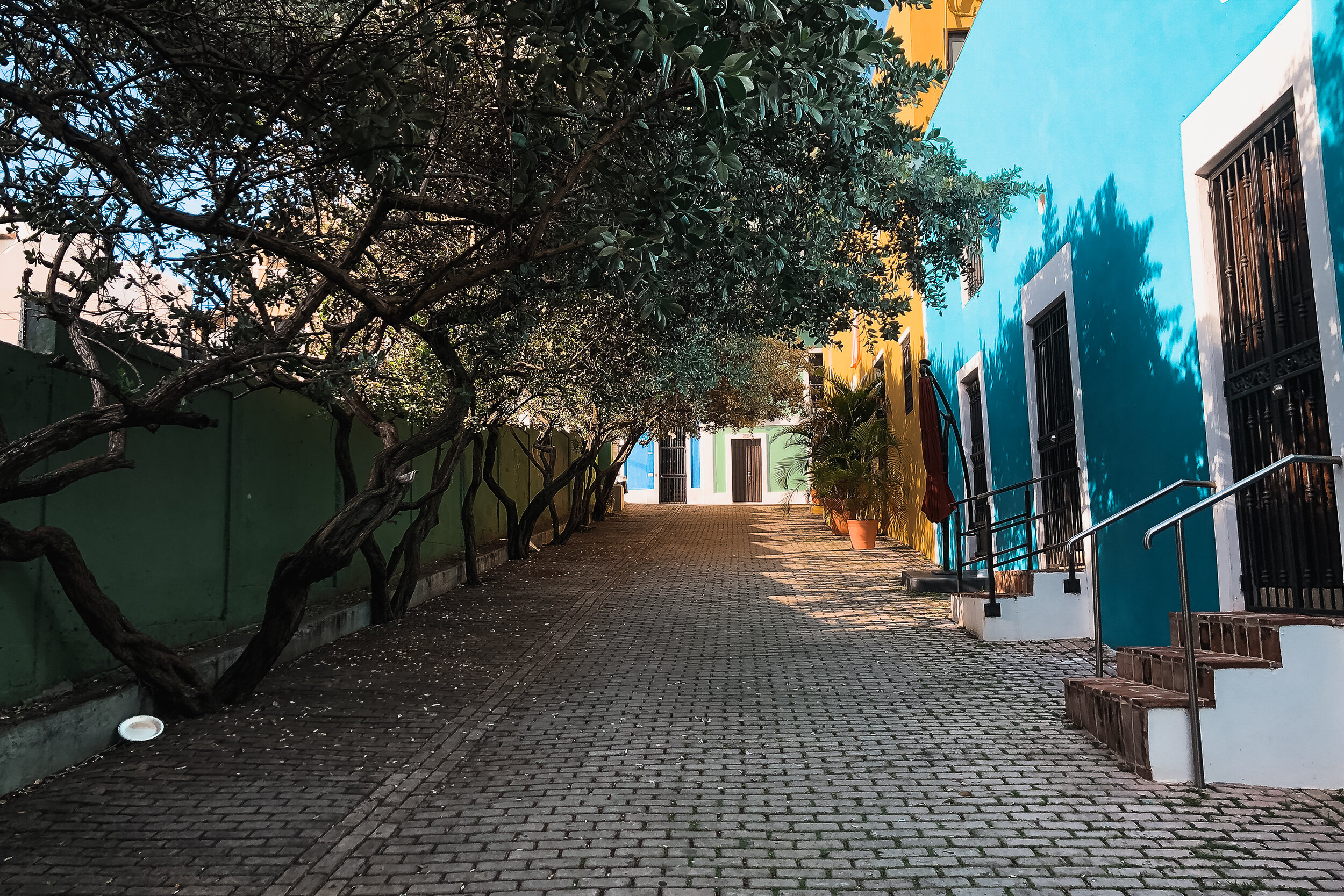
After visiting several times over the past few years, the island has become a second home to us. We often fantasize about moving here, living in the old town and opening a bakery. This guide focuses primarily on Old San Juan (OSJ) and the surrounding neighborhoods in San Juan.







Neighborhoods & Streets
La Perla. A colorful seaside neighborhood located between the north wall of OSJ and the Atlantic Coast. Over the past years, the community in La Perla has turned their neighborhood into a destination filled with rustic bars, local hangouts and art.
Calle San Sebastián. This street is filled with colorful and vibrant colonial architecture and incredible nightlife. Multiple famous bars as well as a few gay bars can be found here.
Calle San Francisco. This street runs central through OSJ and is a good place to start exploring. There are plenty of restaurants, bars, cafes, shops, hotels, plazas and residences here.
Calle de la Luna. Though all streets in OSJ are flanked with beautiful architecture, this one is one of our favorites to walk down. There are many colorful buildings, colonial balconies, unique door knockers and abandoned buildings that have been retaken by nature.
Calle Fortaleza. This street is filled with shops, restaurants and usually has a shaded awning the block before reaching the Governor’s Palace, La Forteleza. It used to be hundreds of colorful umbrellas and most recently, the Puerto Rican flag.
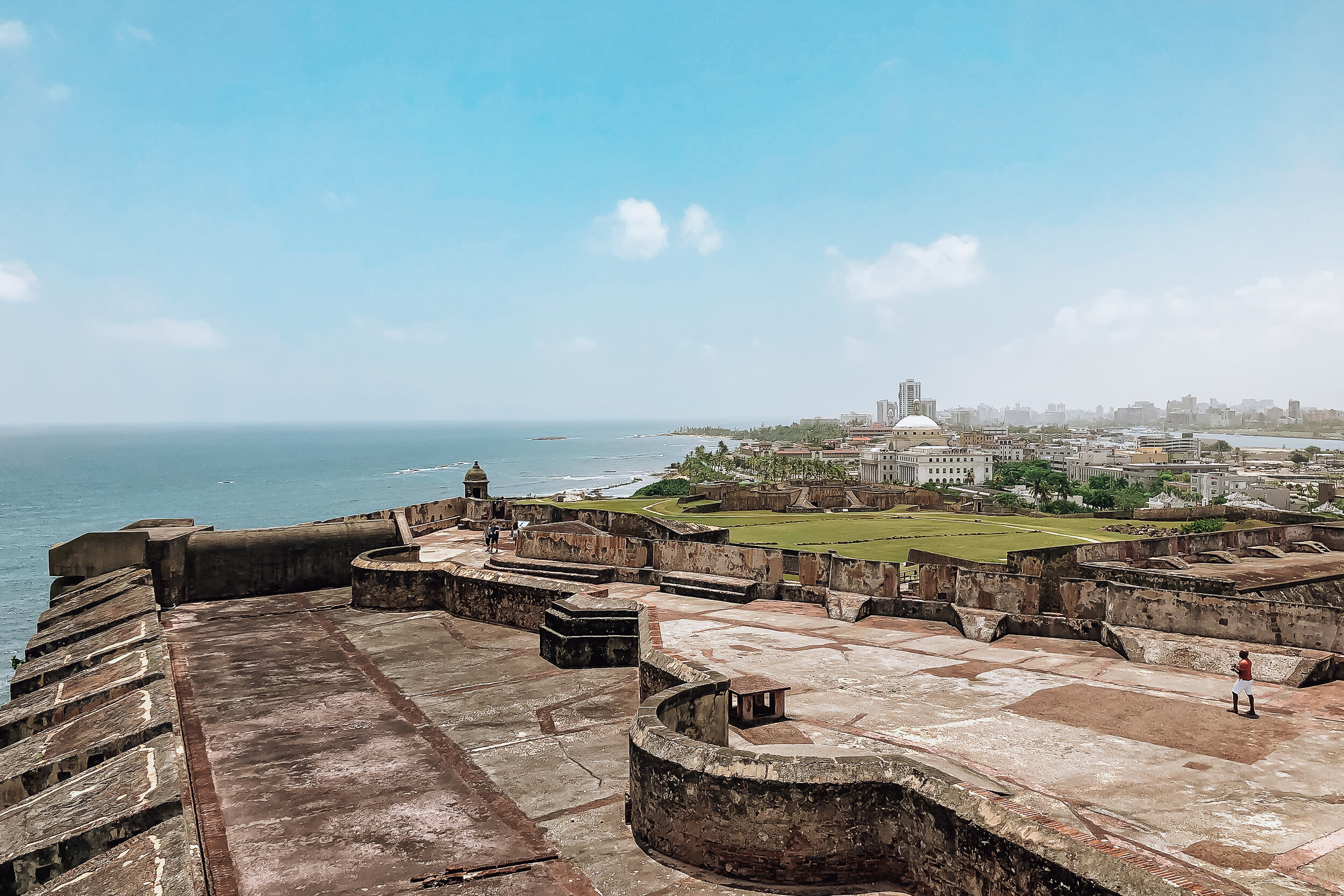
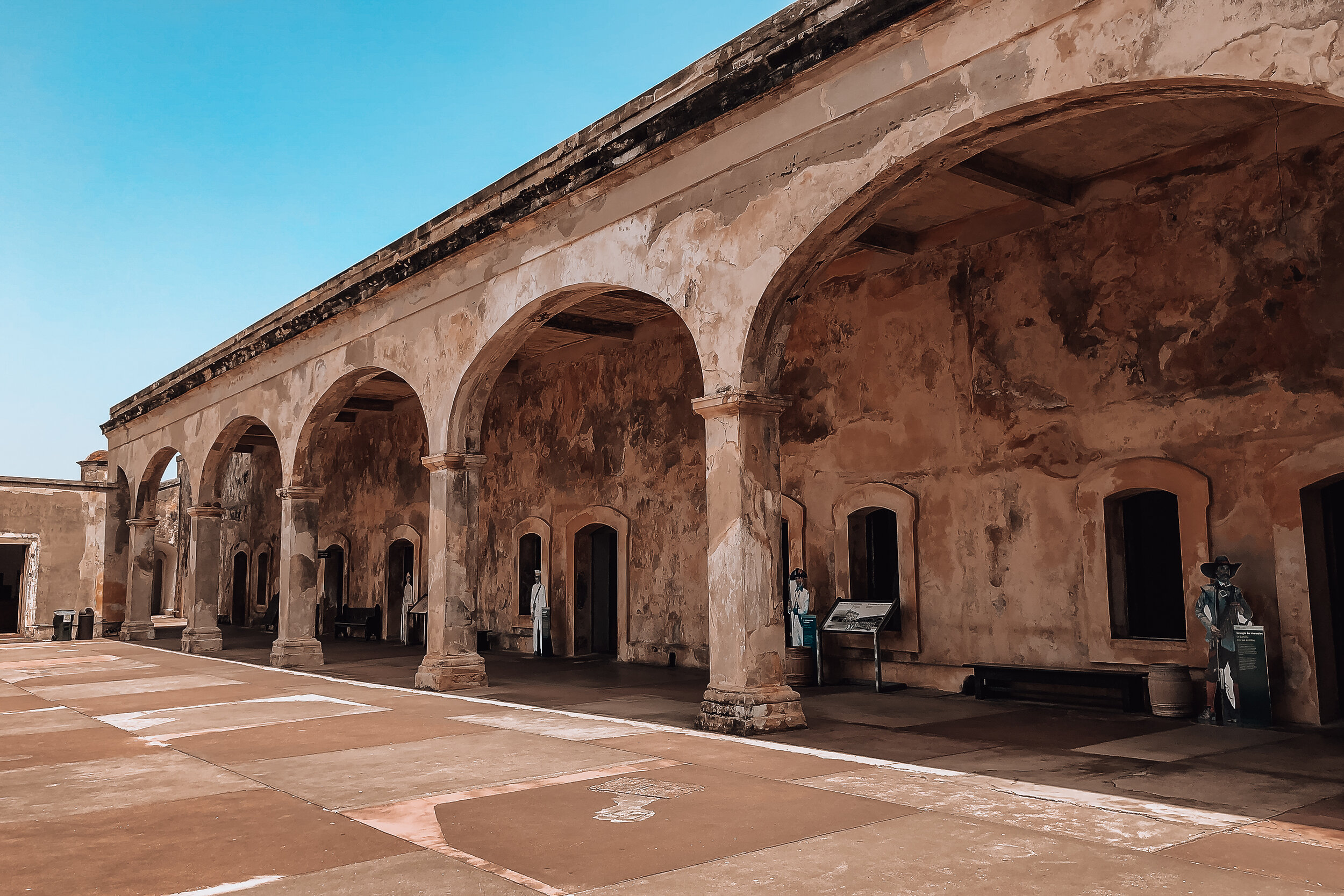
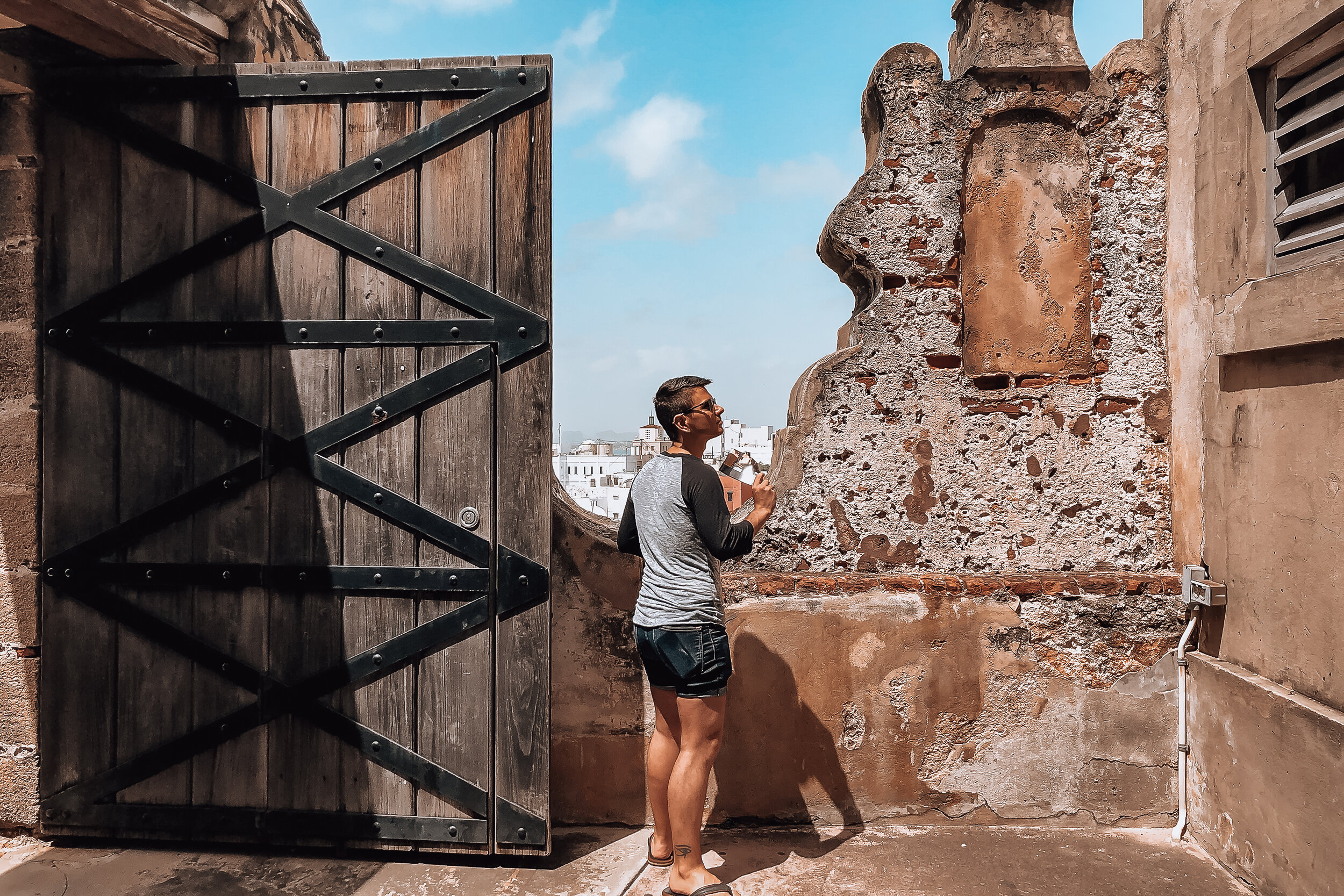
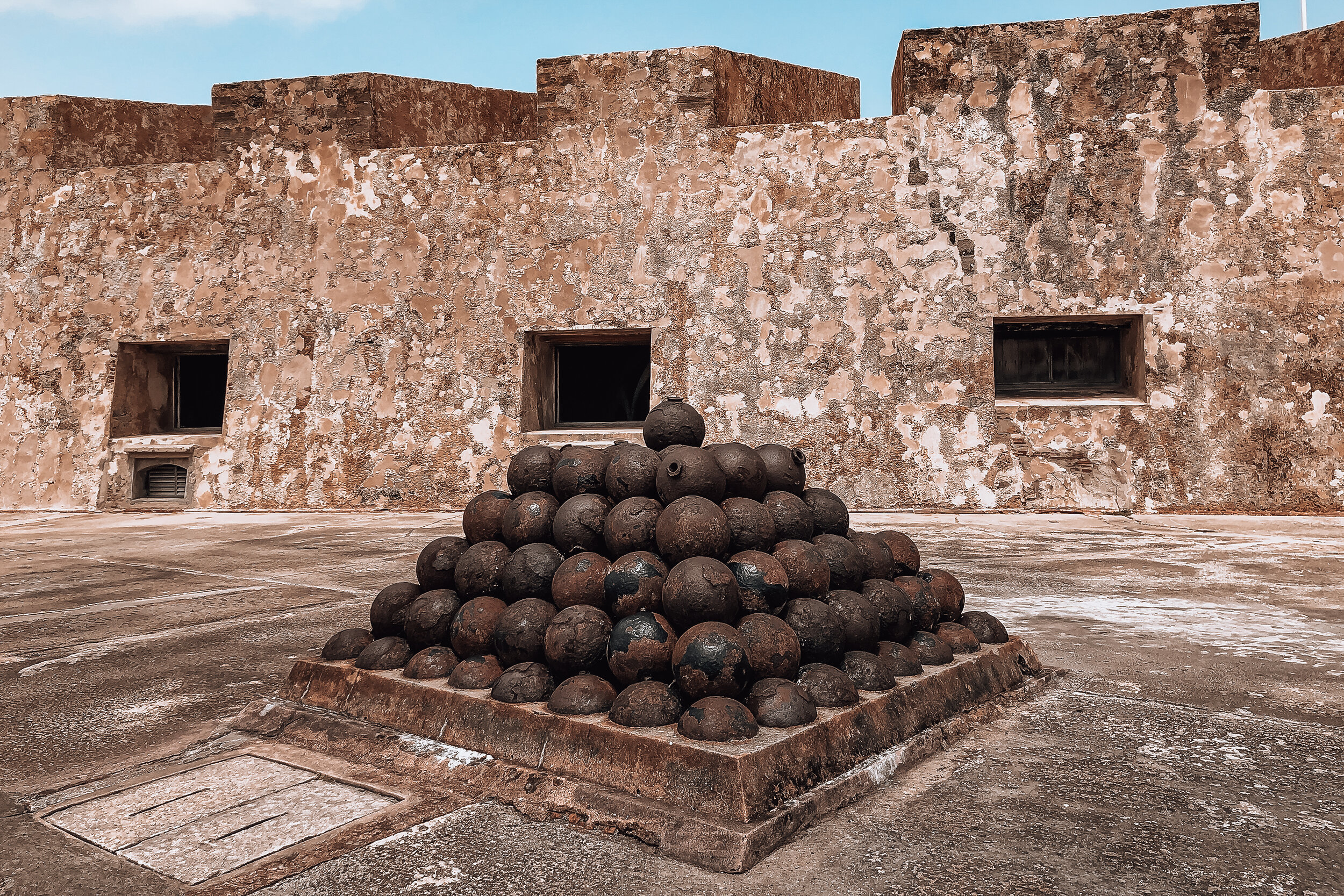
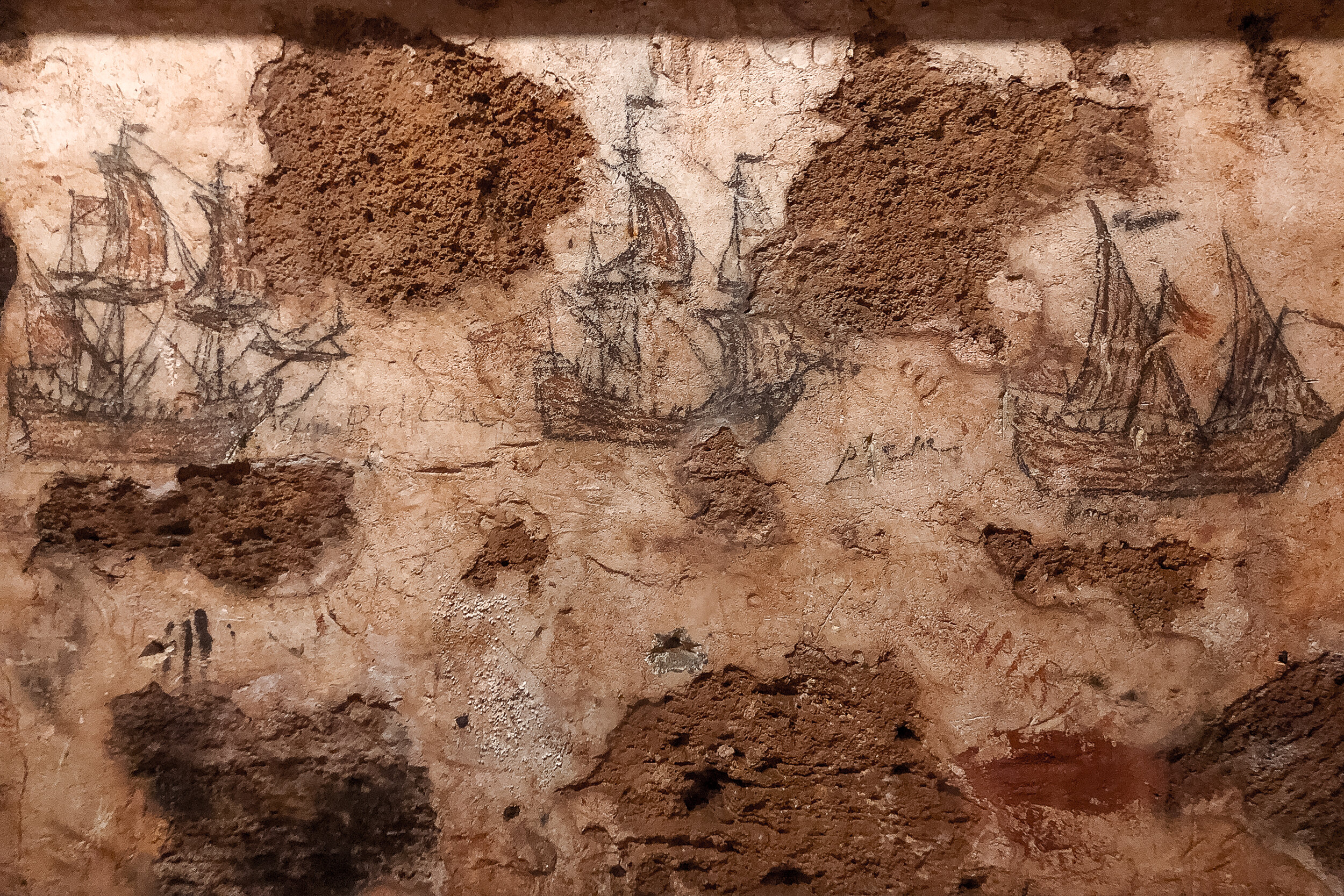
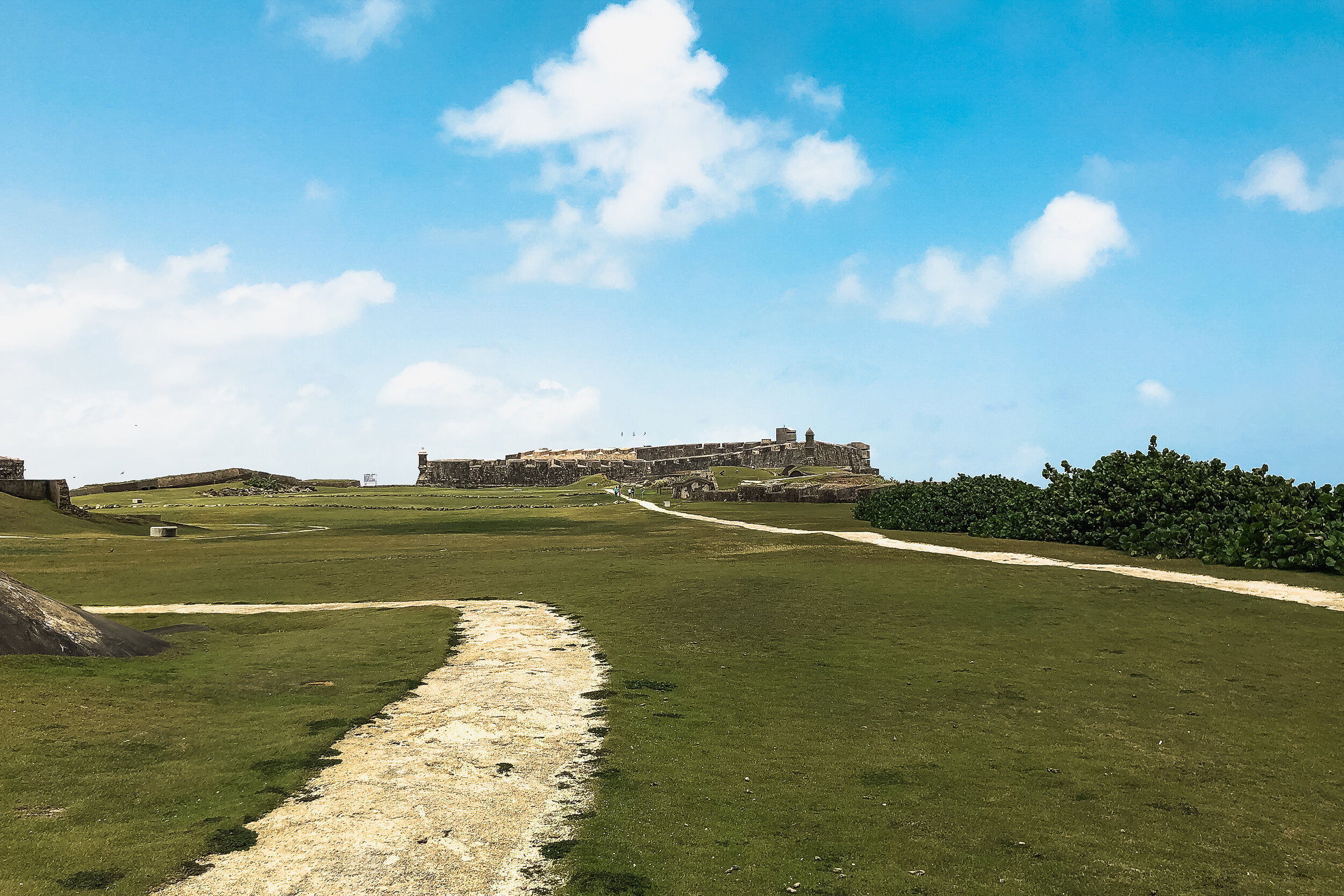
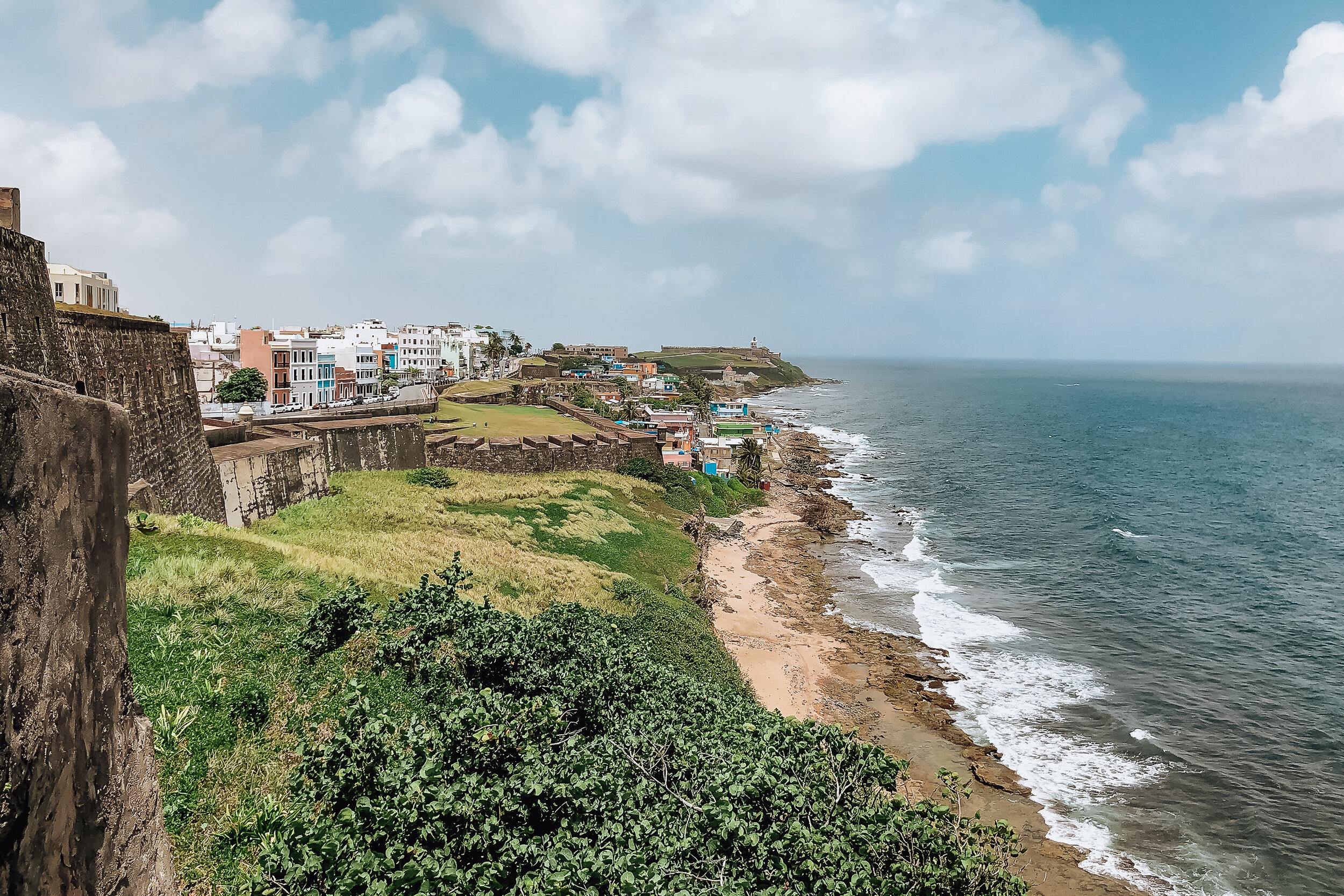
Sights & Museums
Castillo de San Cristóbal. This is one of the largest colonial military fortress in the Caribbean and marks the entrance to OSJ. You can easily spend a half day here exploring the barracks, fortress walls, guard towers and grounds. One of the fort’s hidden gems is a surviving drawing of Spanish ships drawn on the wall of a former prison cell deep with in the tunnels.
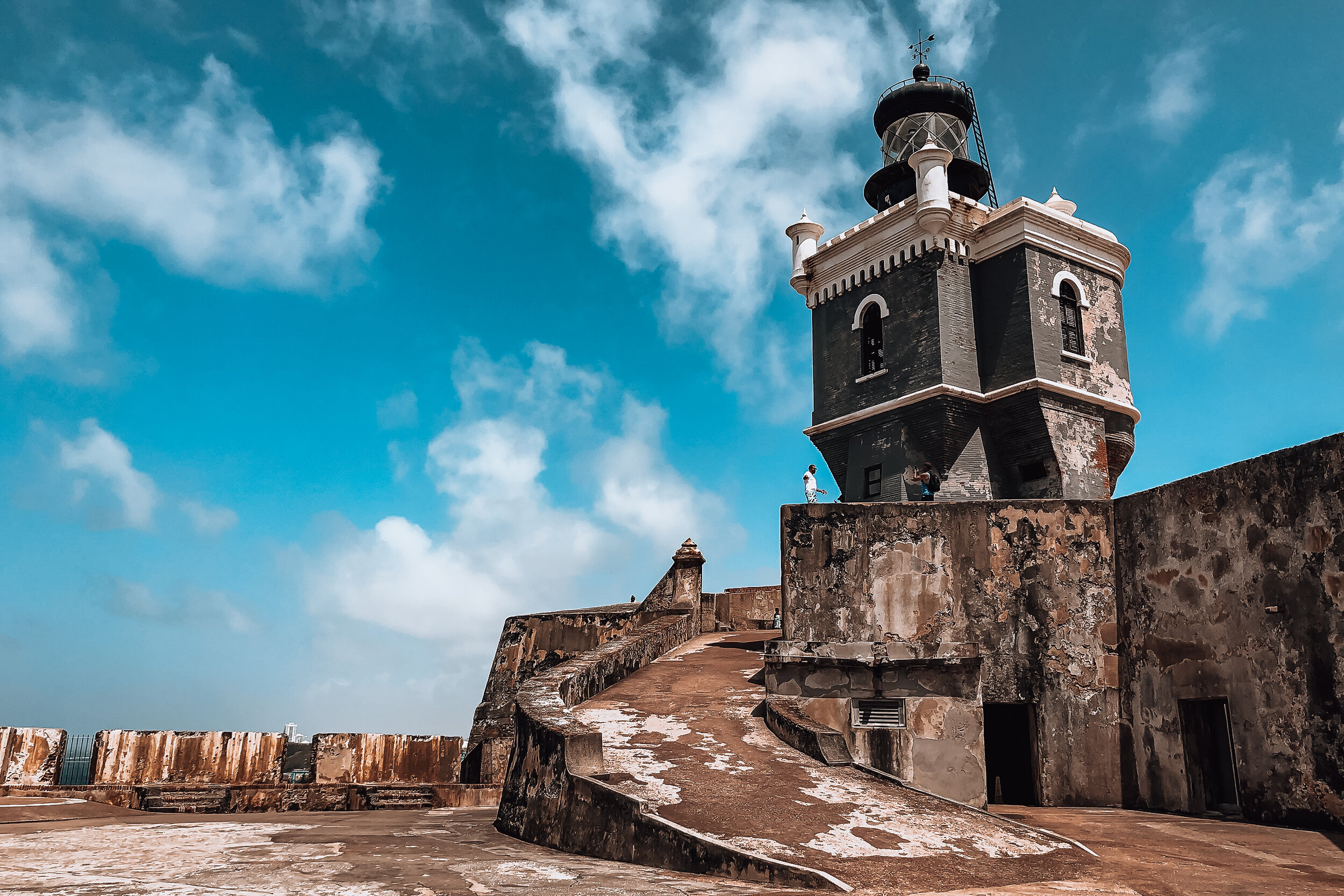
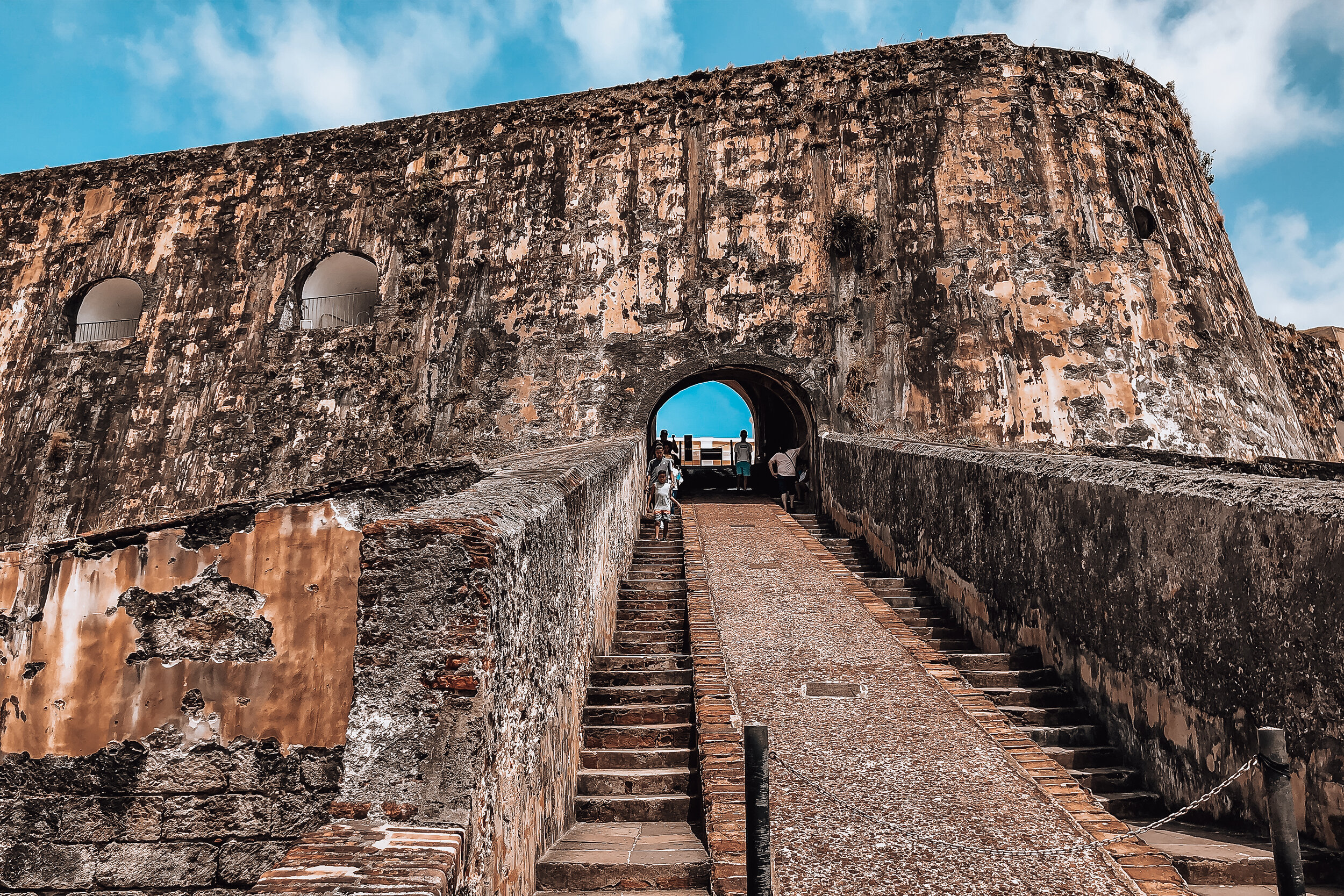
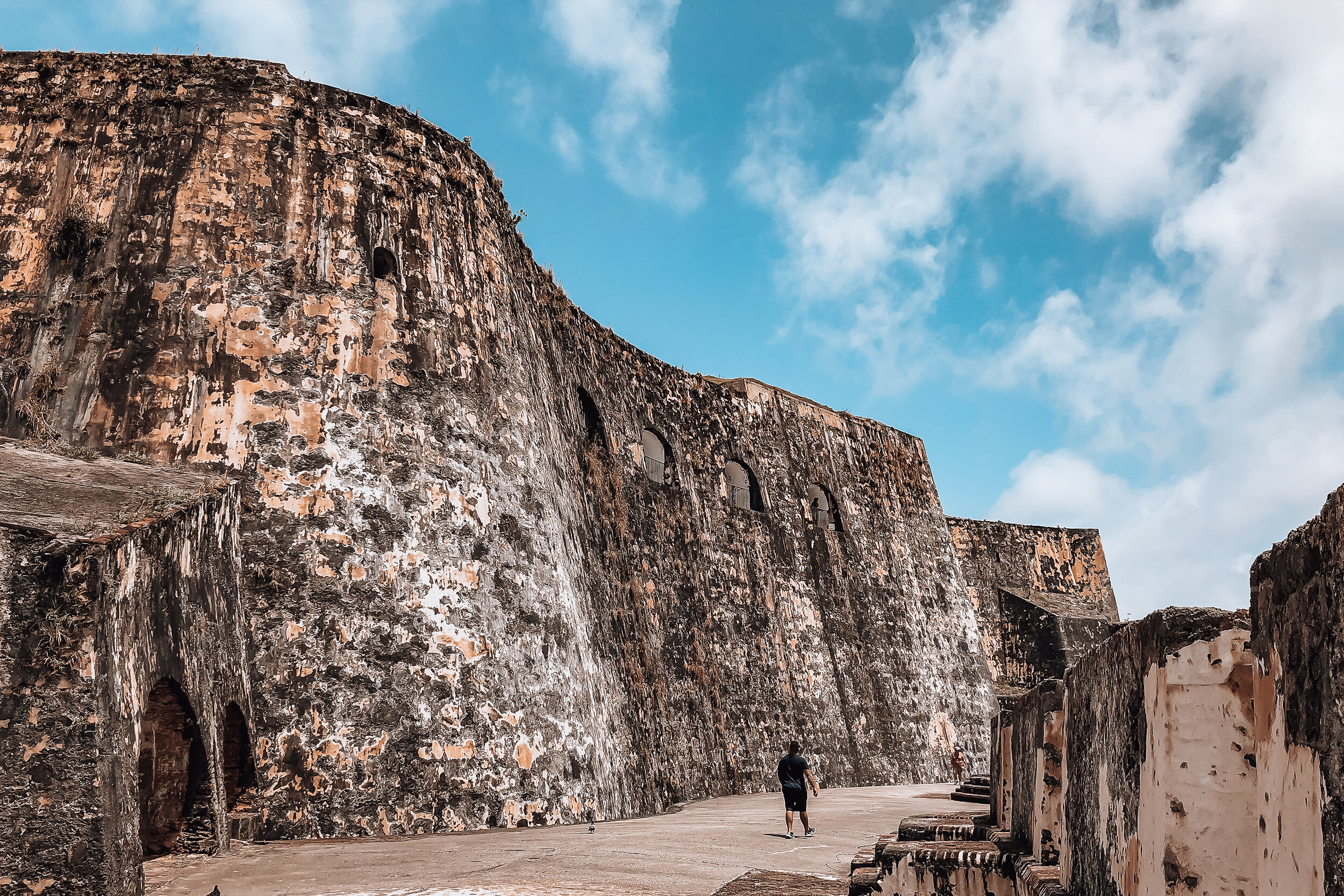
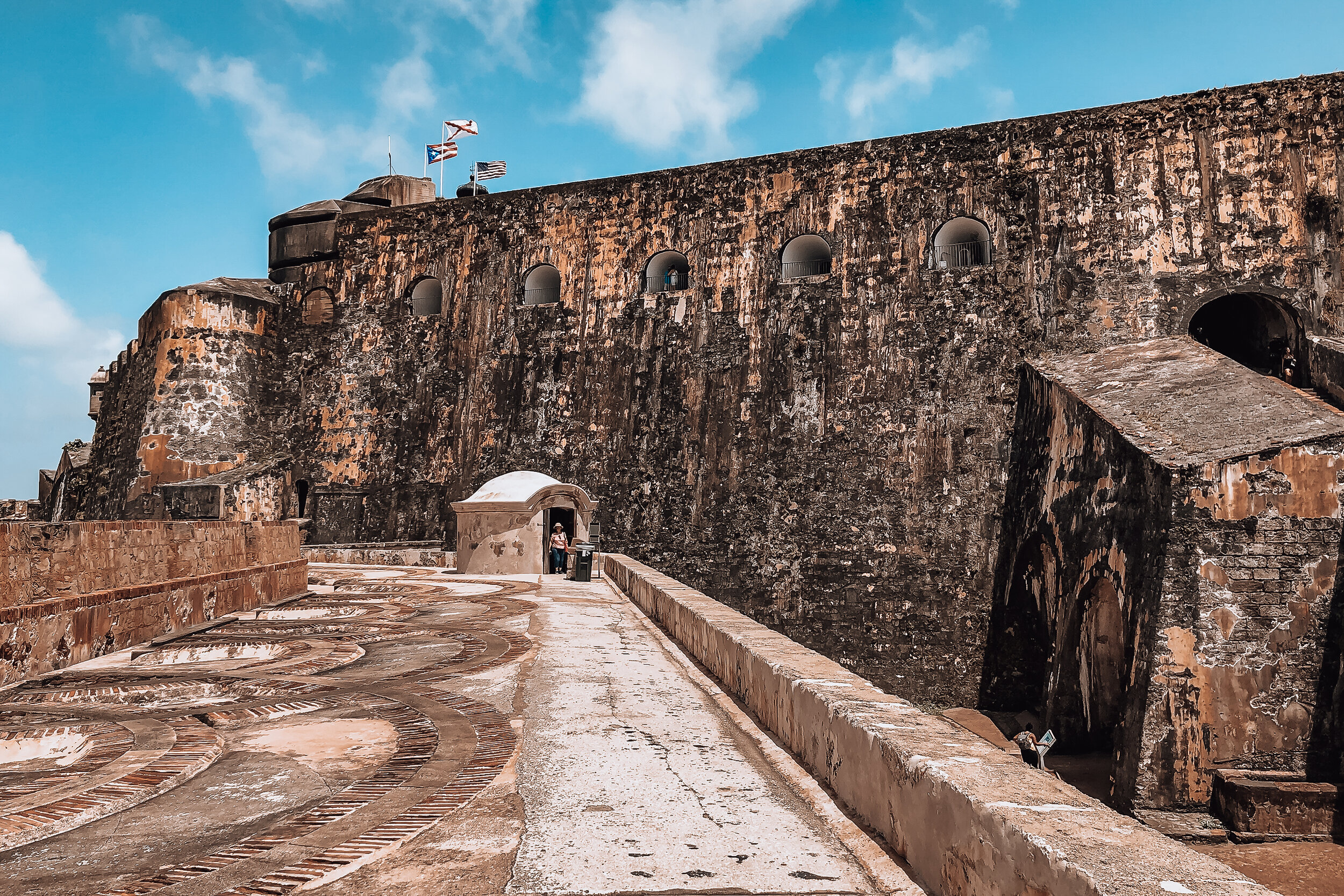
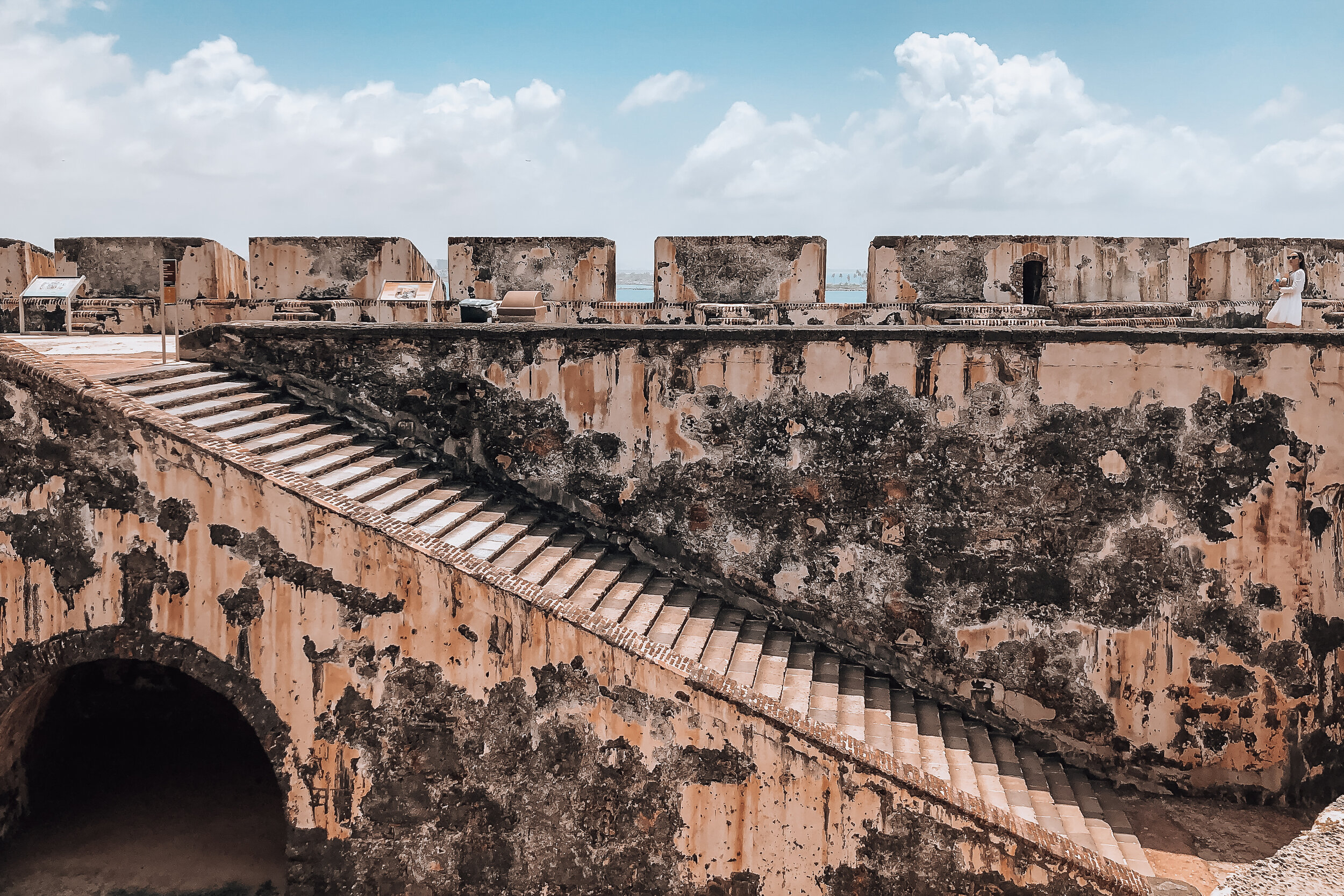
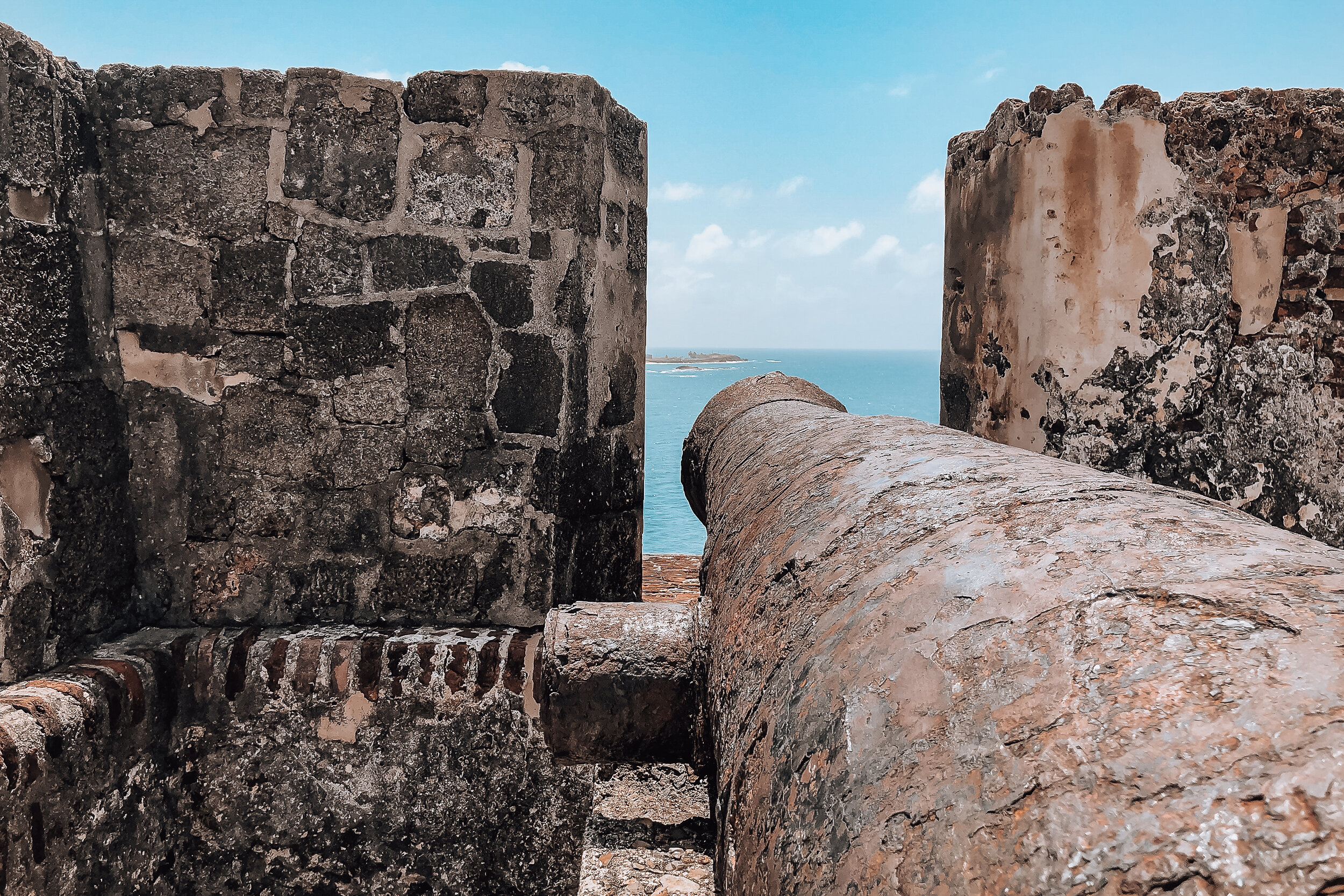
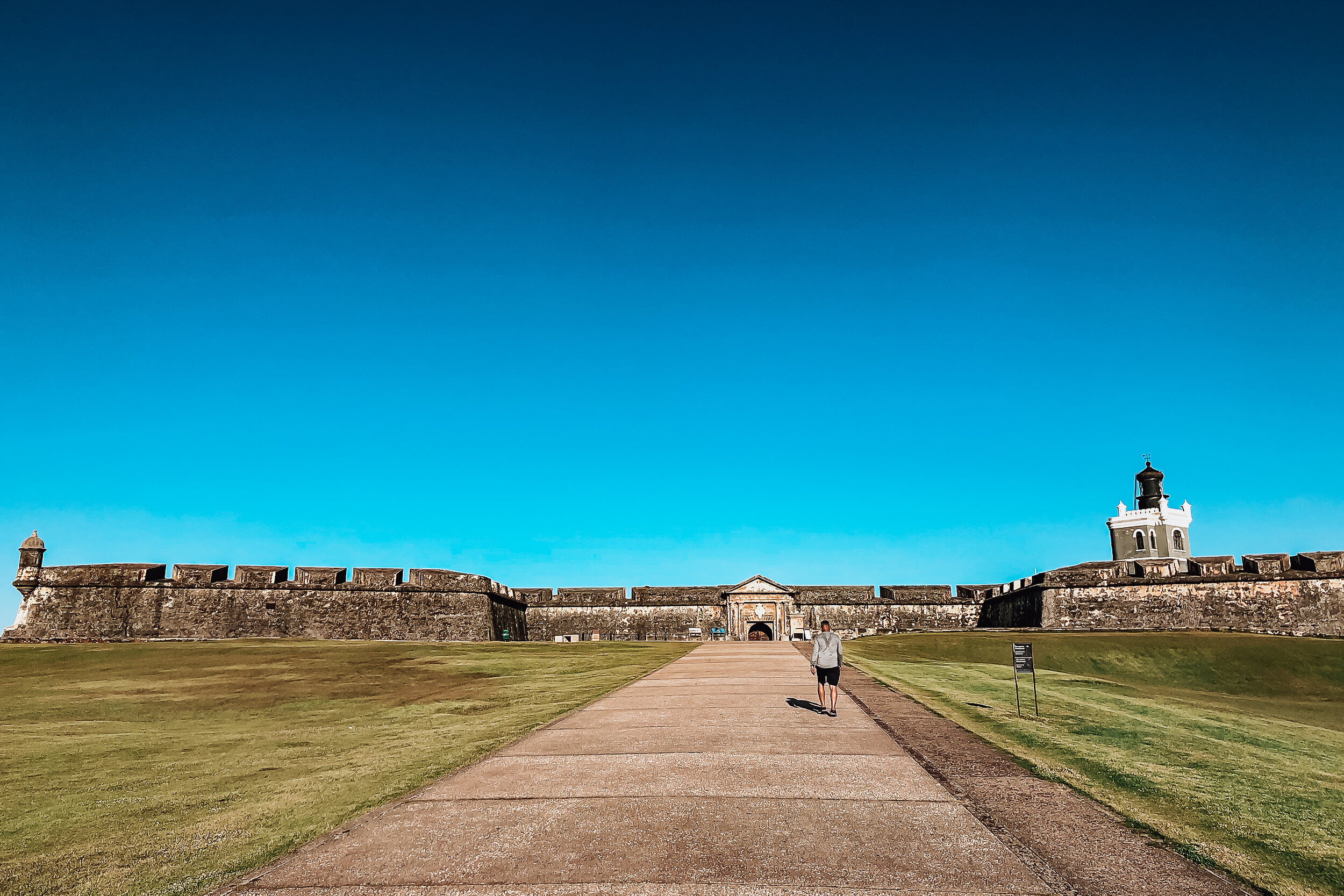
Castillo San Felipe del Morro (El Morro). This is the oldest colonial fortress in the Caribbean and a great place to learn about the history and strategic importance of OSJ. Similar to San Cristobal, you can spend an afternoon here exploring the different levels and sections. The fort is perched on the NW side of the old town. It’s accessible after crossing a large lawn known for flying Chiringas or kites and food carts selling Piraguas, tropical flavored shaved ice.
(Pro tip: Your receipt from one fort gets you access to the other on the same day you visit.)
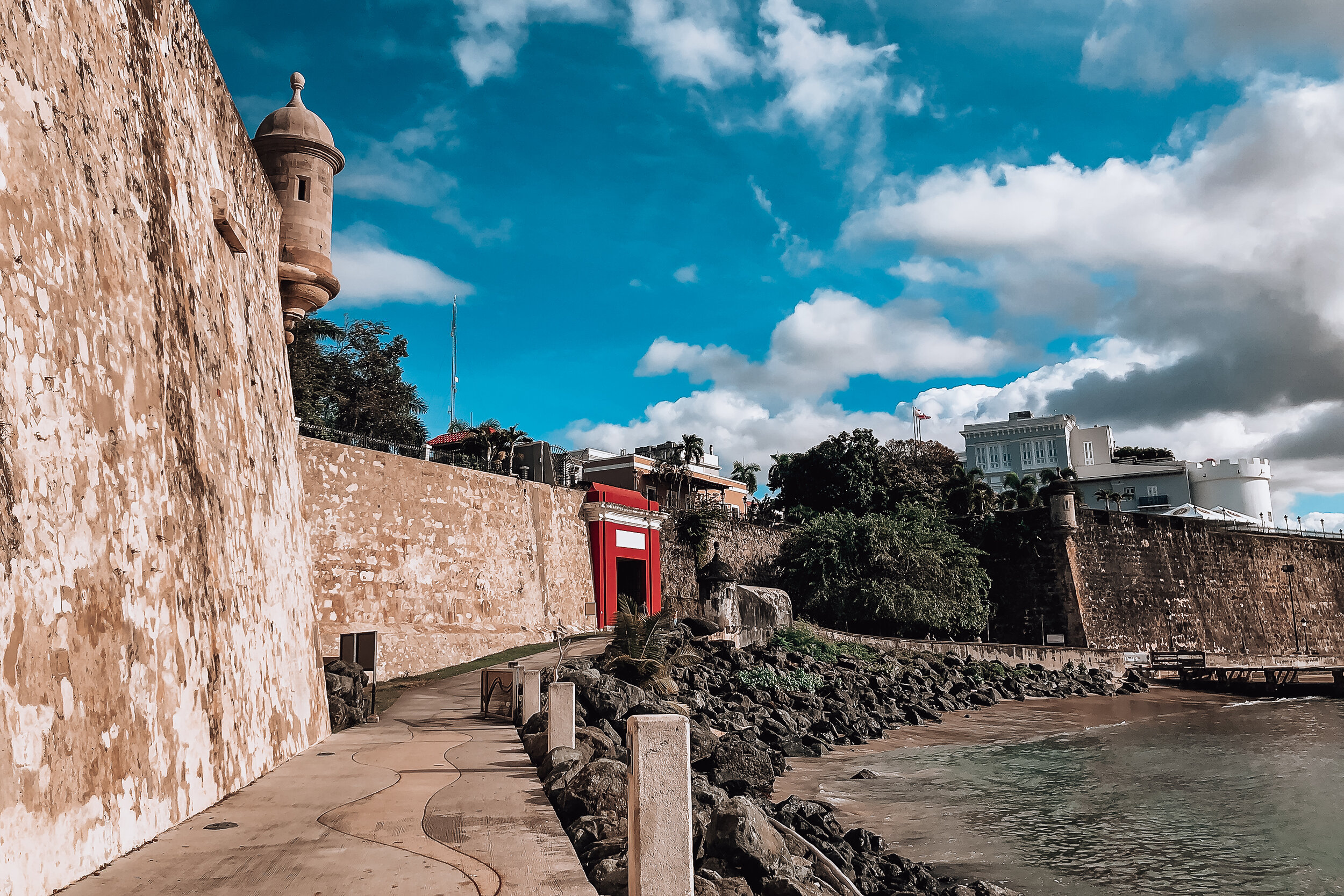
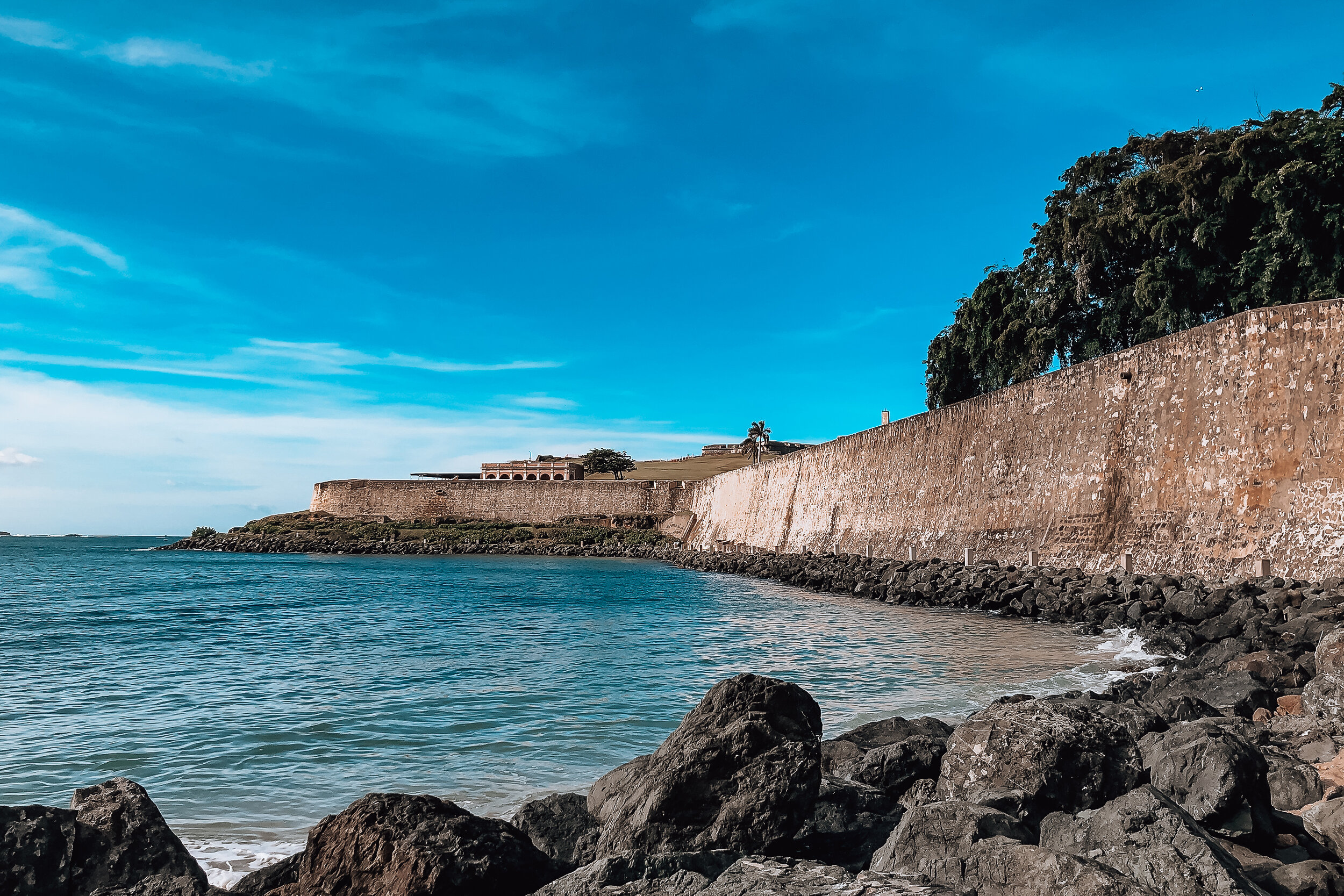
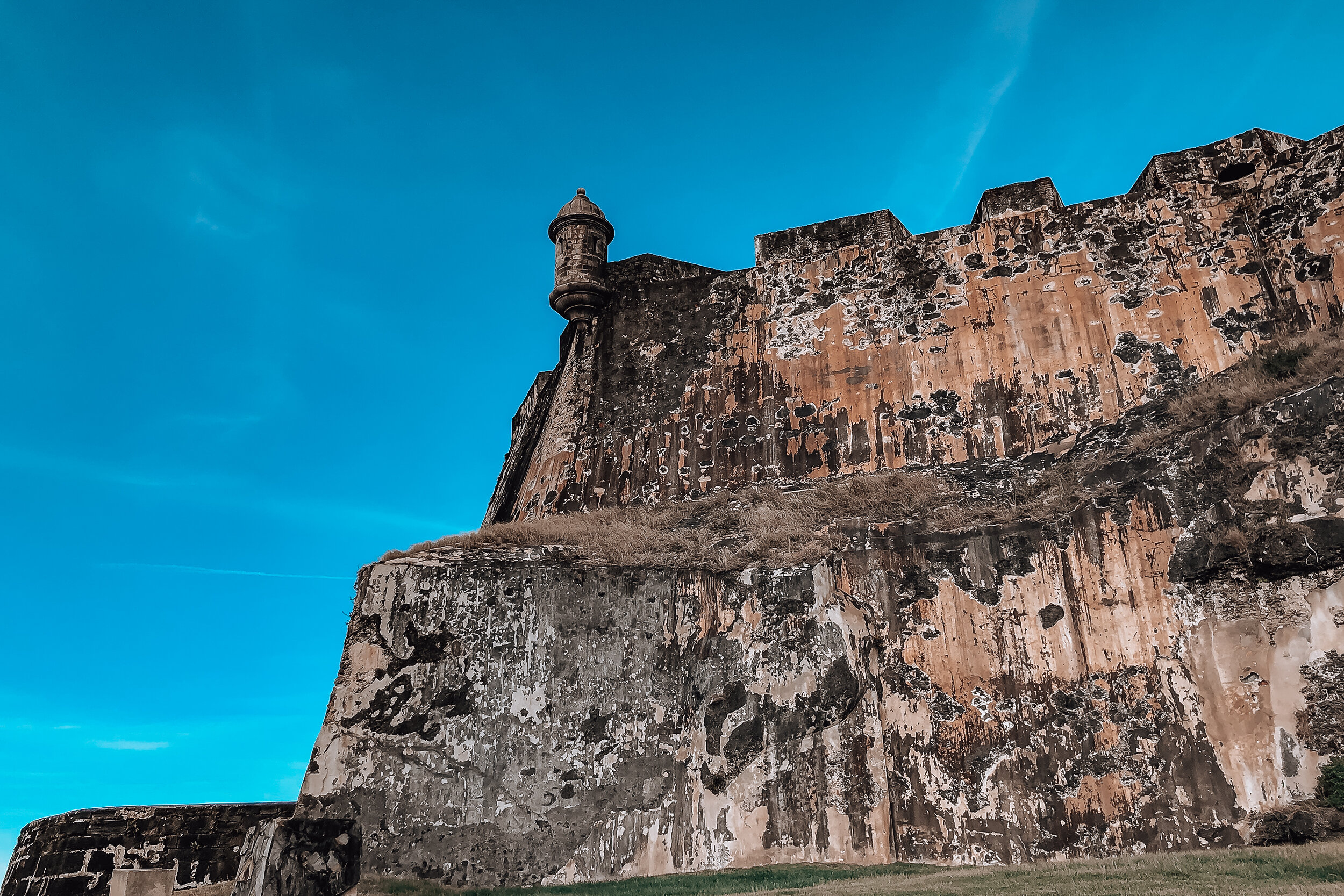
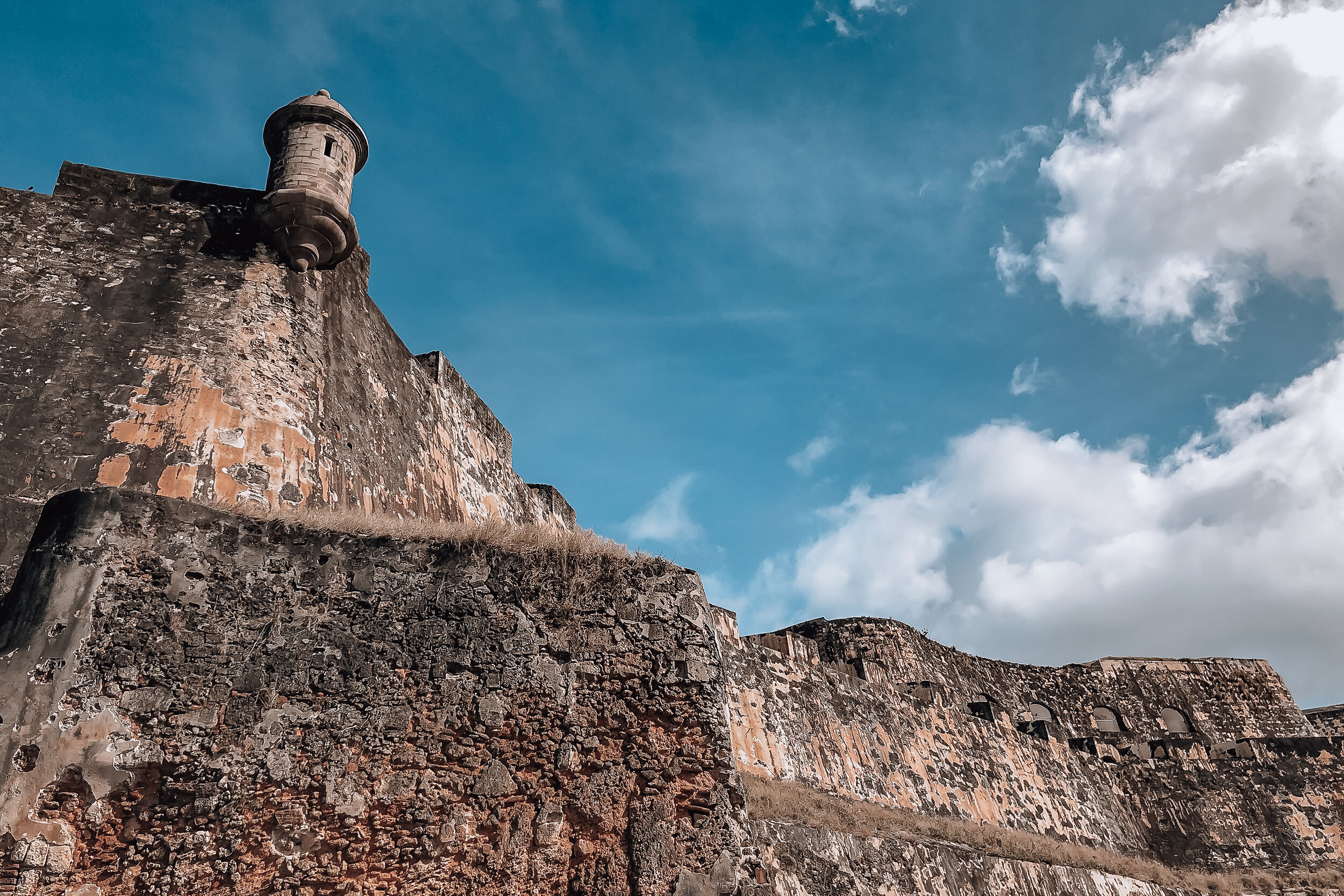
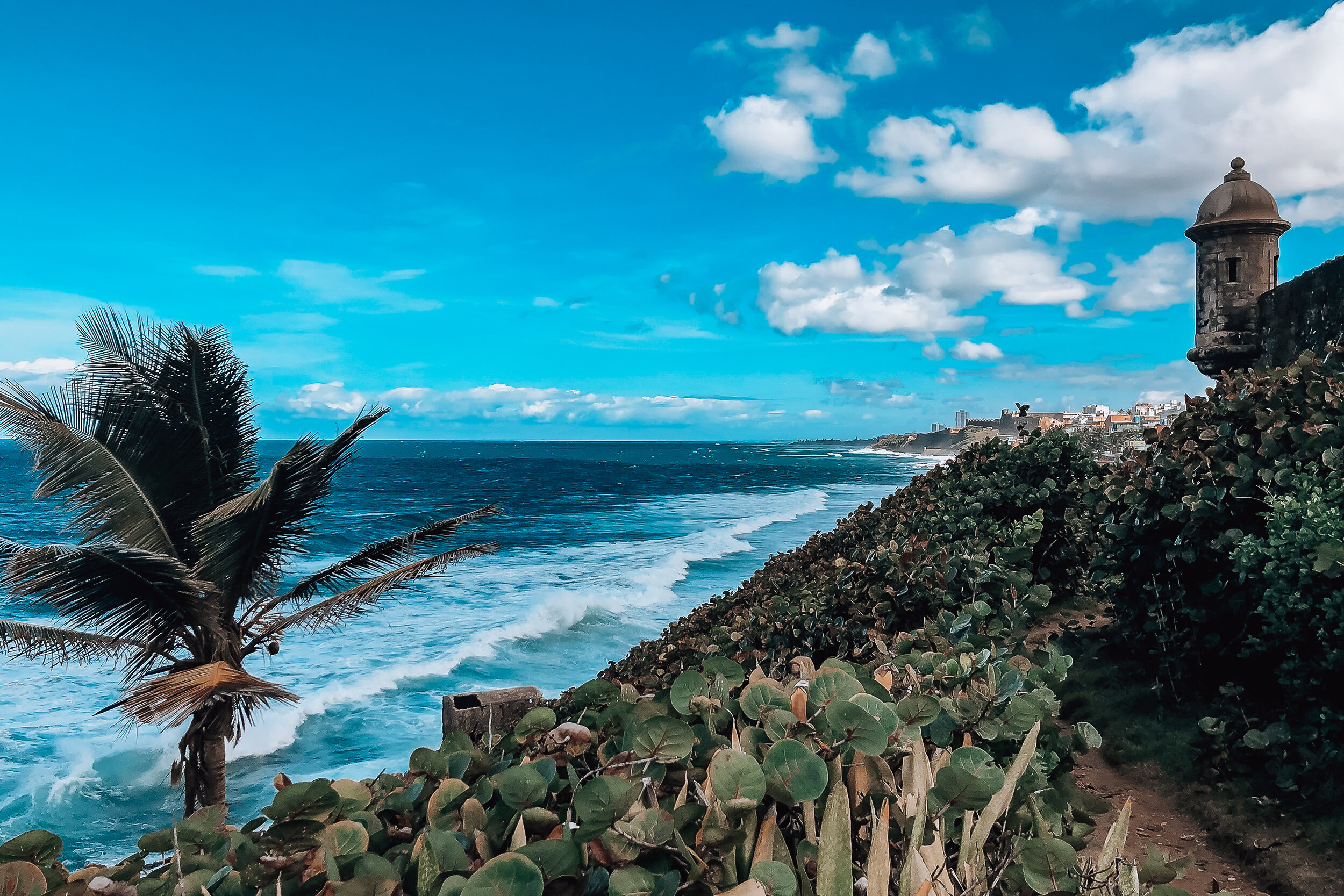
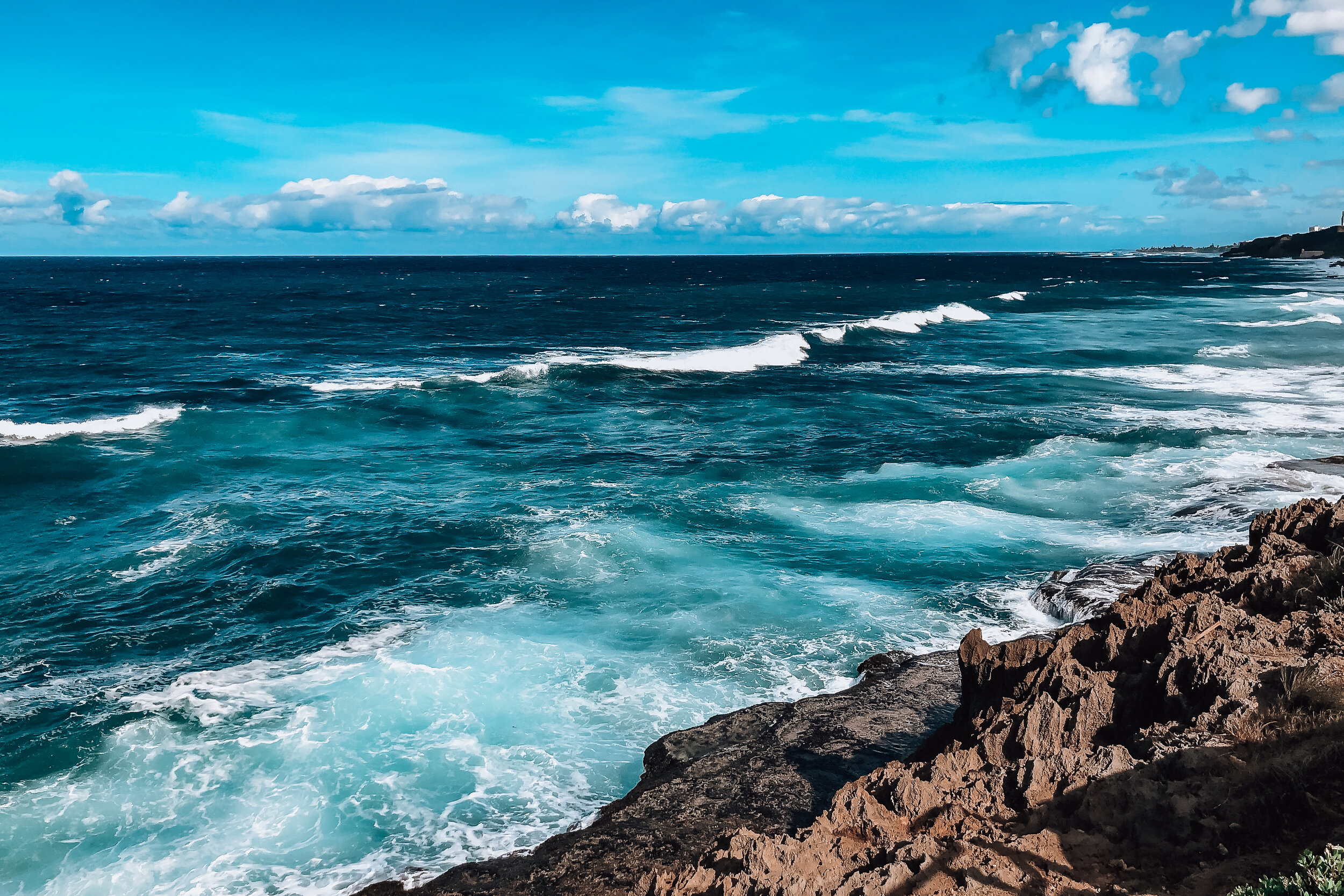
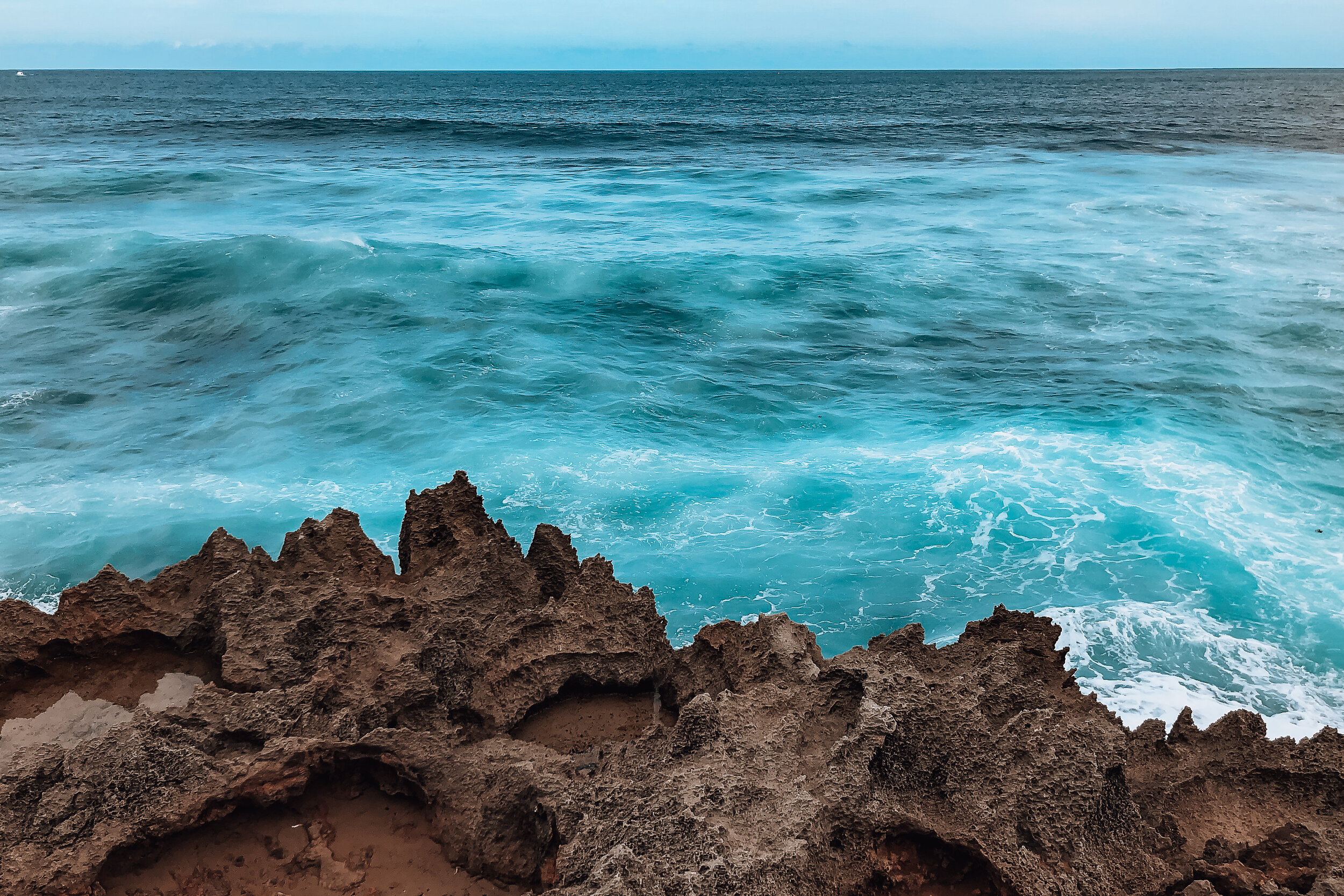
Paseo del Morro. A romantic seaside pathway that follows the old town’s wall. It is a beautiful place to walk, watch the sunset and look out towards the sea. It passes La Puerta de San Juan, the original entrance to the walled city and connects Paseo de la Princesa to the Maria Magdelana Cemetery.


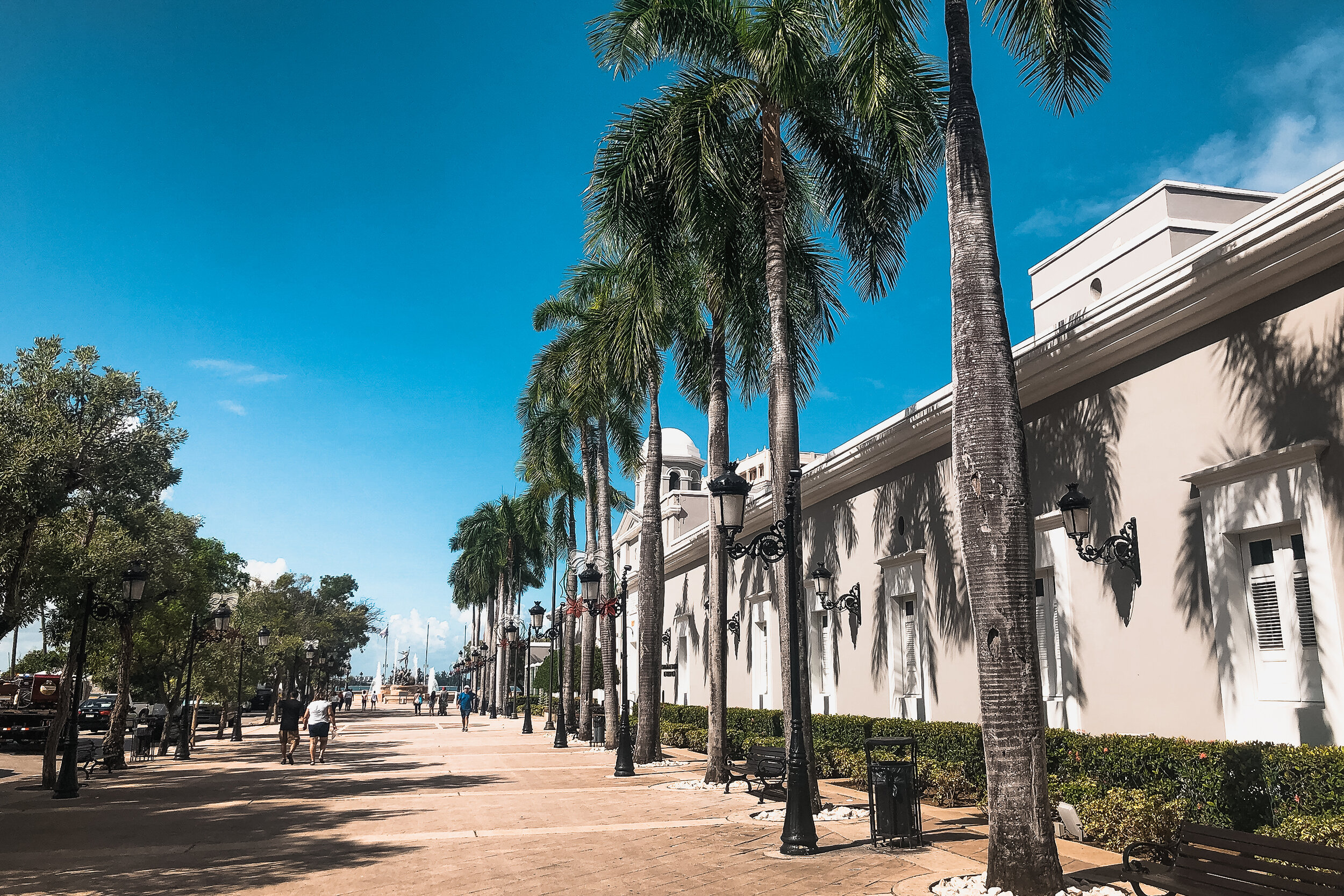
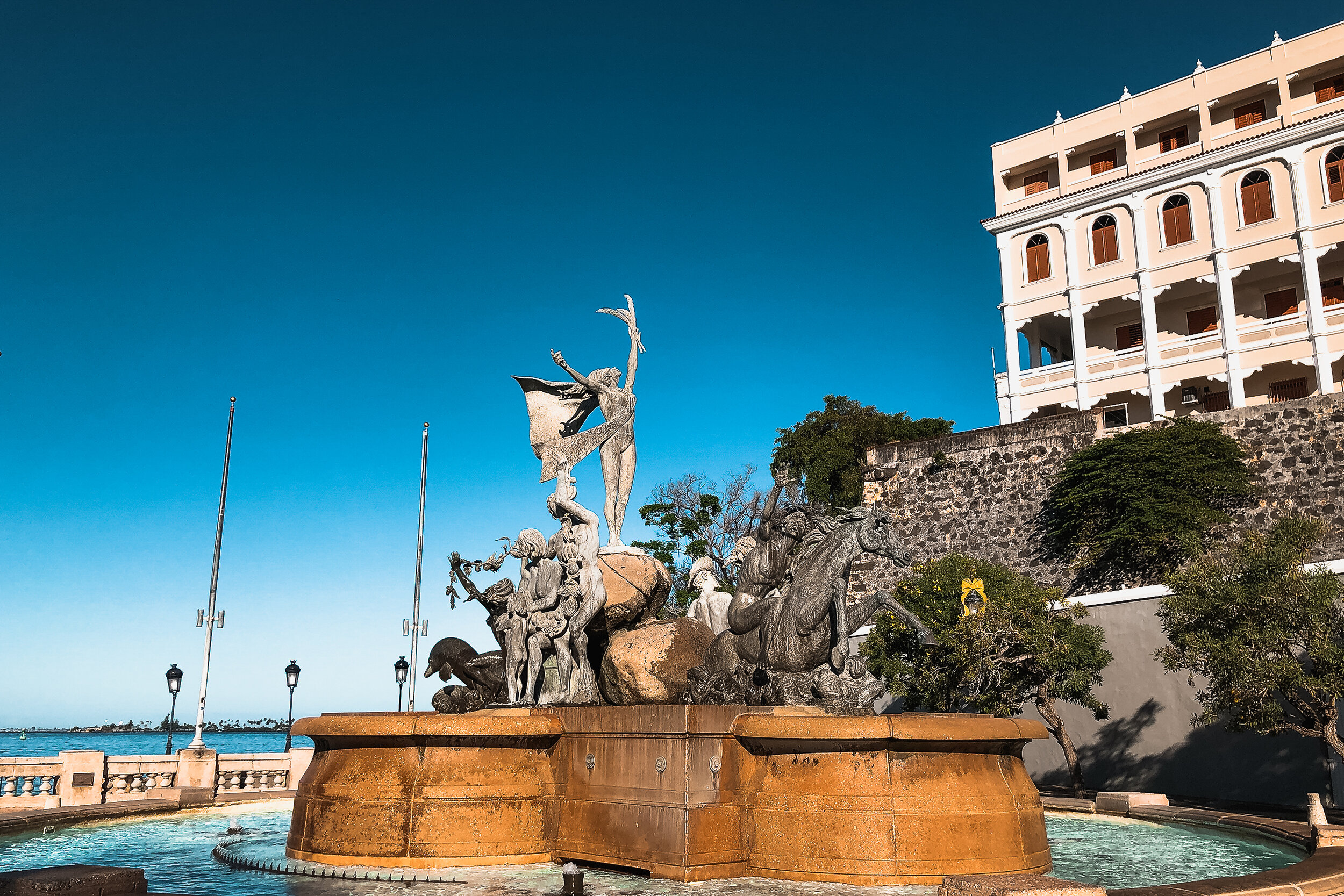
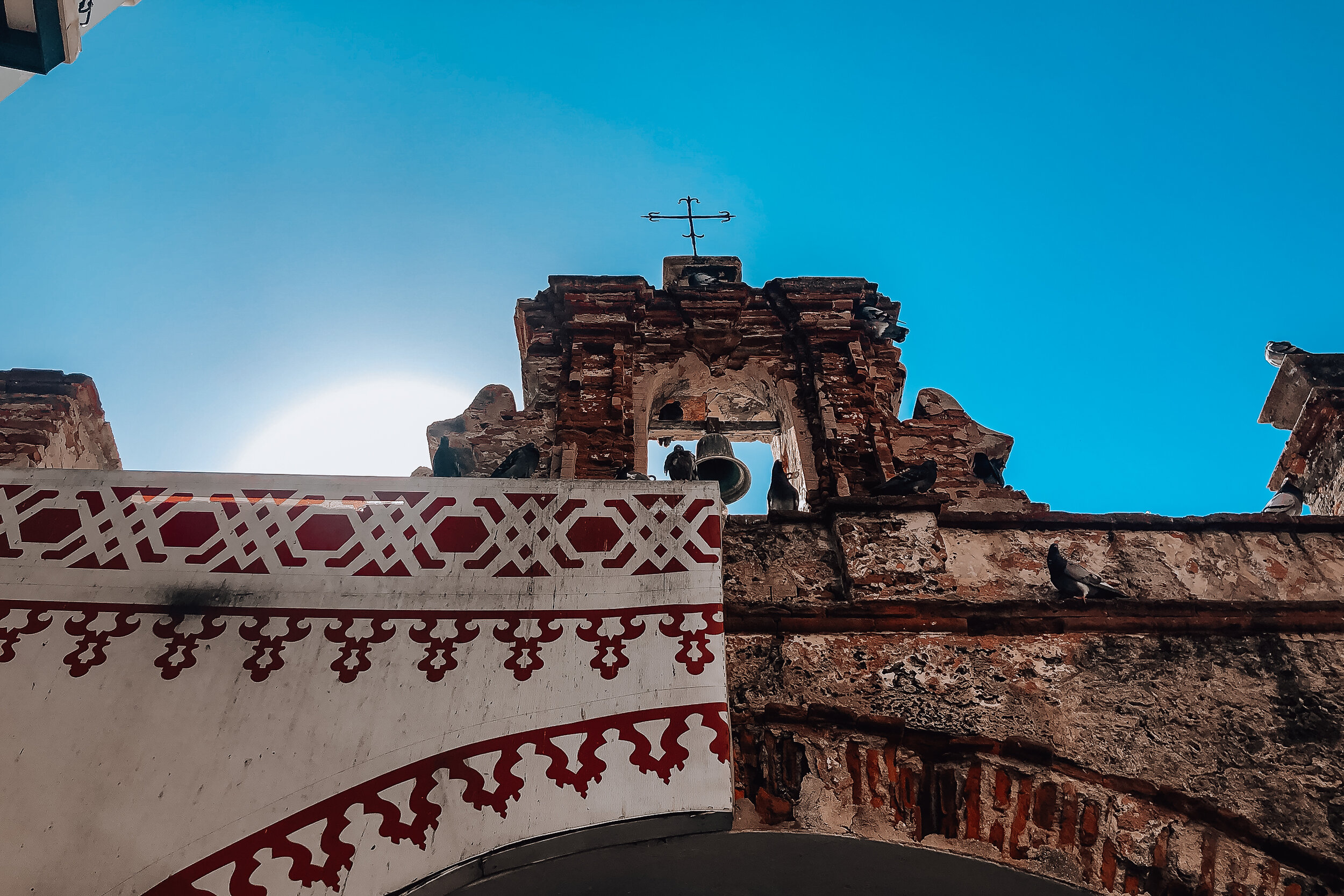
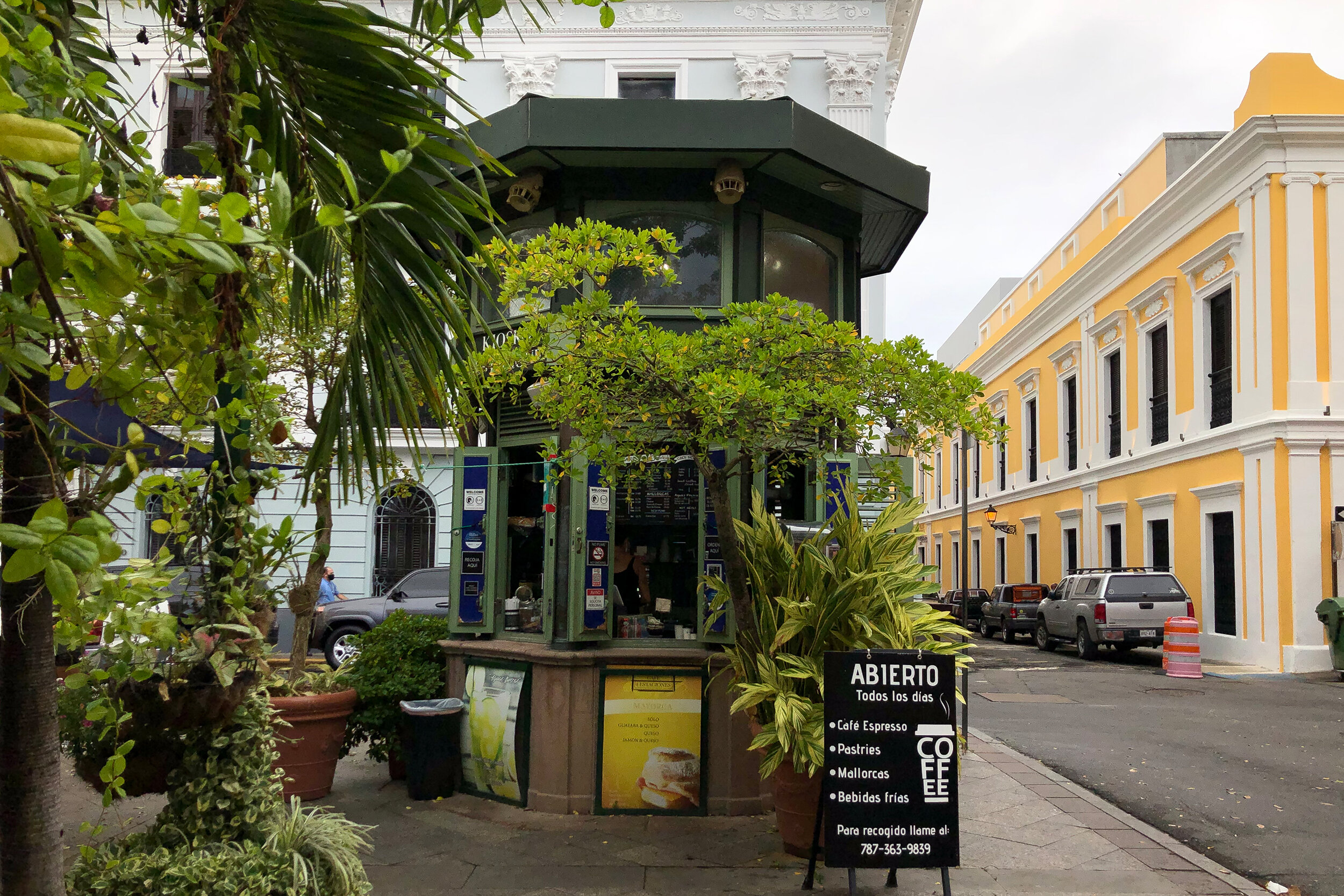
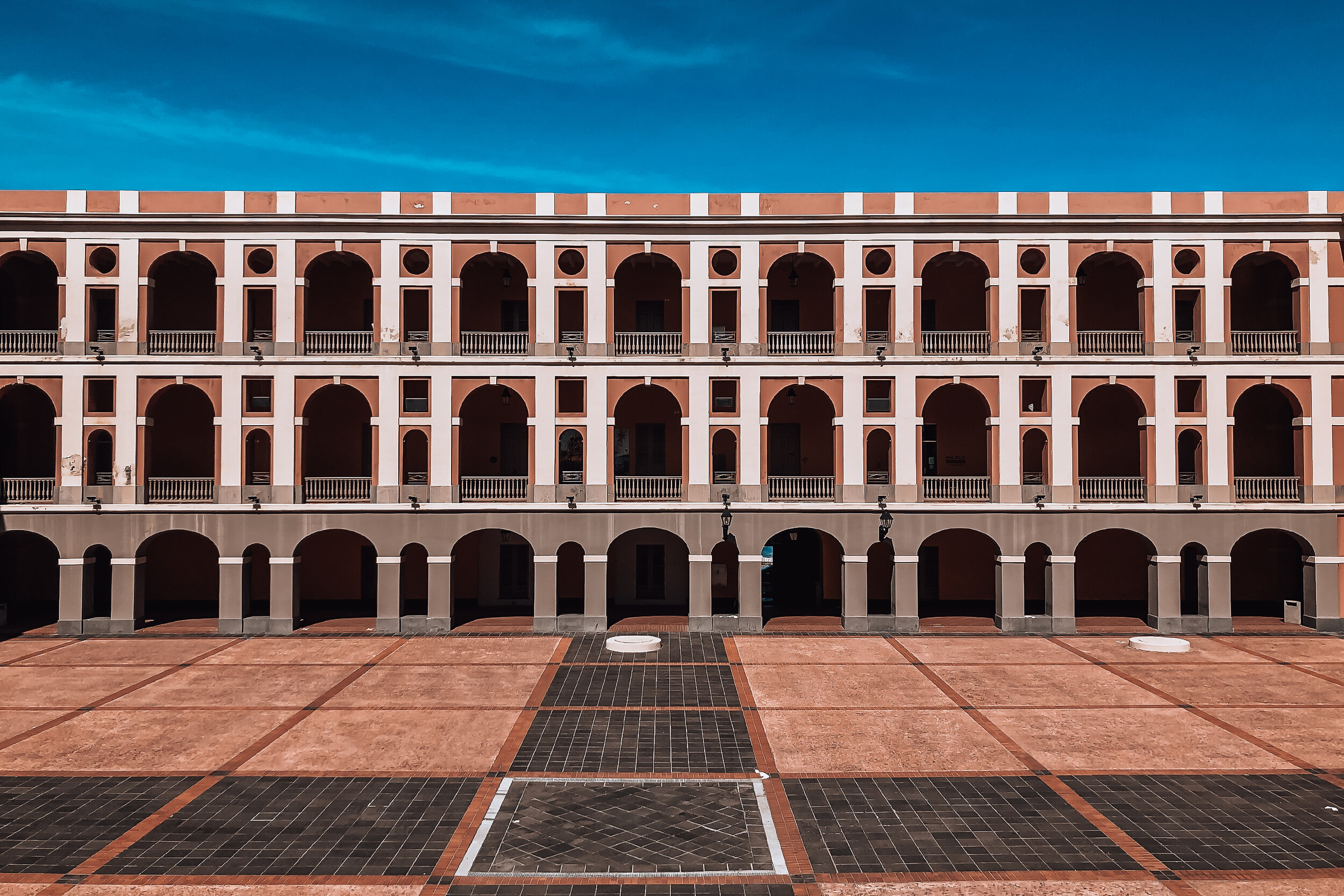
Maria Magdalena Cemetery. A beautiful seaside cemetery located between La Perla and El Morro along the coast, a strategic place thought to carry the deceased souls across the ocean and into the afterlife.
Paseo de la Princesa. A palm lined seaside promenade along the south wall. There is a nightly market with salsa dancing, food trucks offering up fried foods and sweets, gazebos selling cocktails, and tented vendors selling homemade crafts.
Capilla del Cristo. A small but beautiful chapel dedicated to health and well being. People feed and pose with pigeons here…
Plaza das Armas. OSJ’s historic town square with performers, a fountain, statues and pigeons. It’s a favorite spot of ours to grab a coffee and mallorca from the green gazebo in the NW corner.
Museo de las Americas. This museum focuses on pre-colonial and modern art and artifacts, the colonization of Puerto Rico and the island’s African heritage.
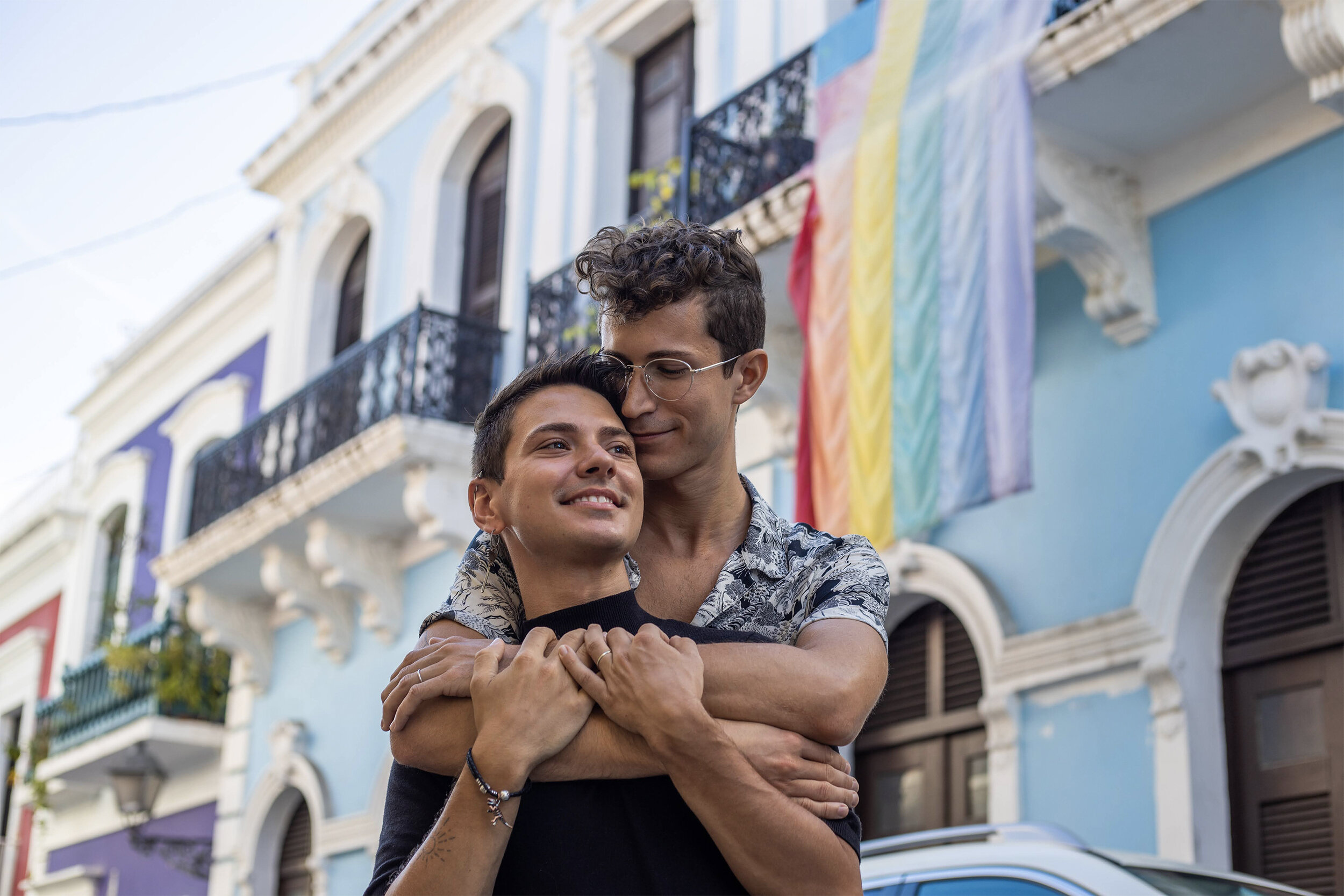
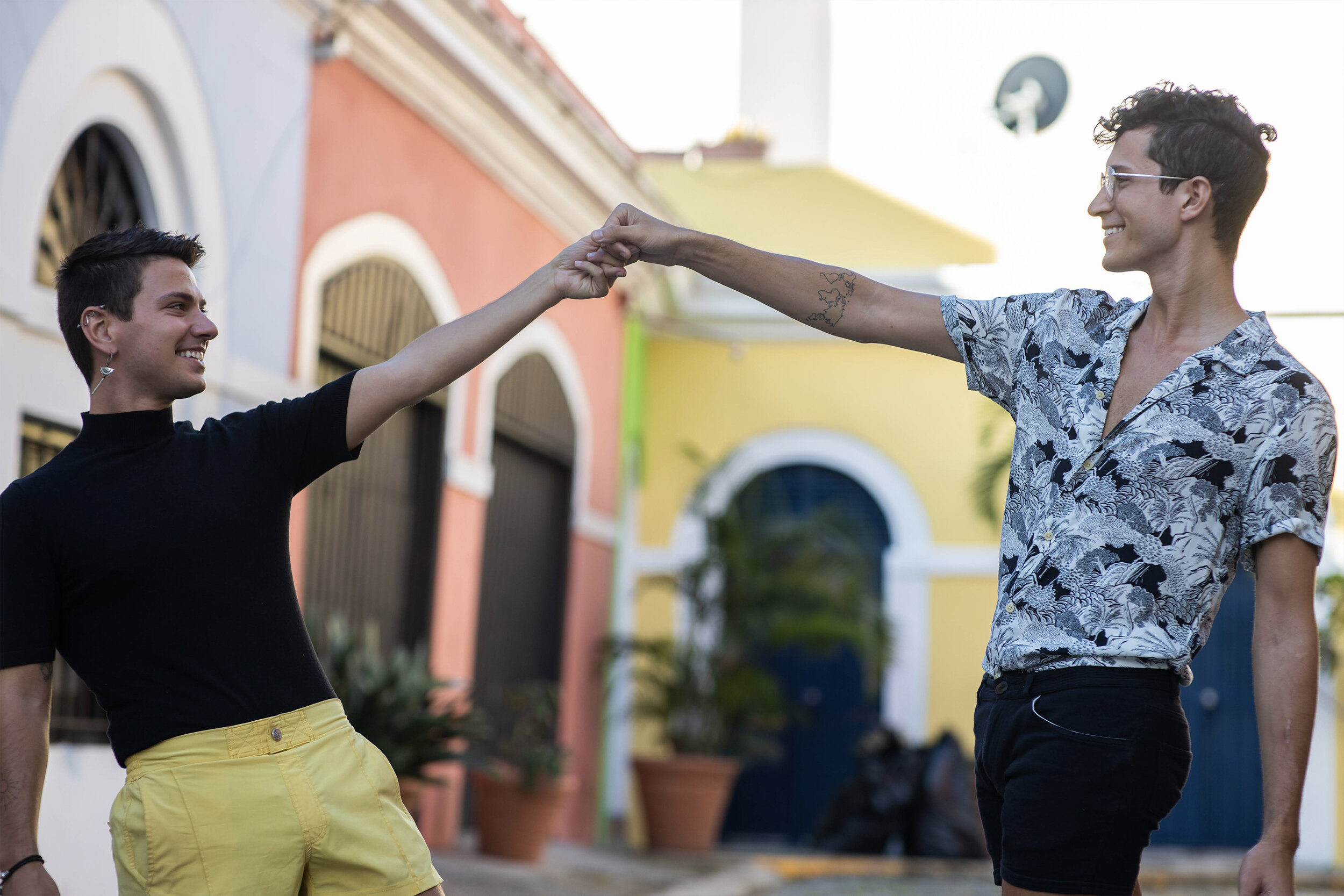
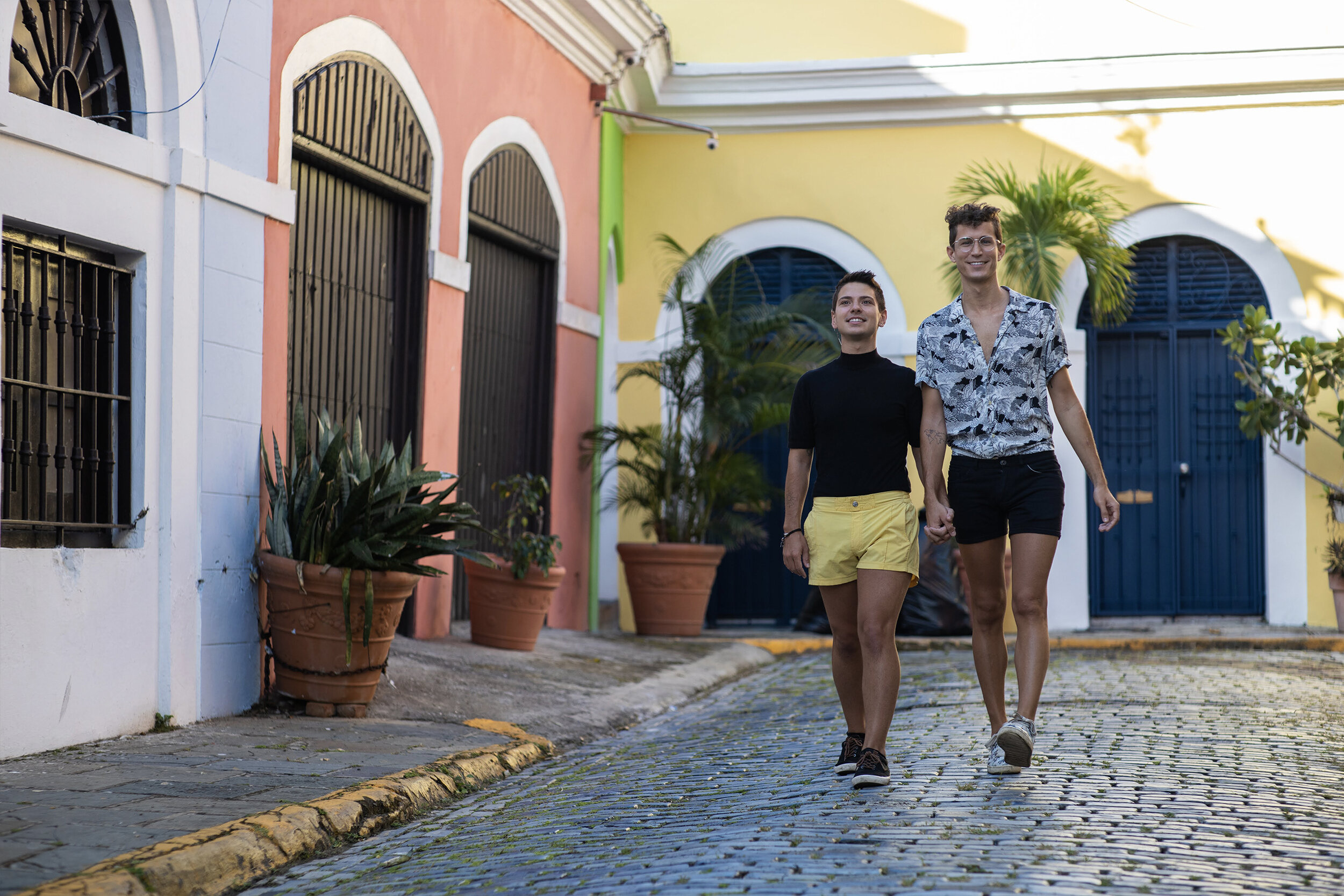
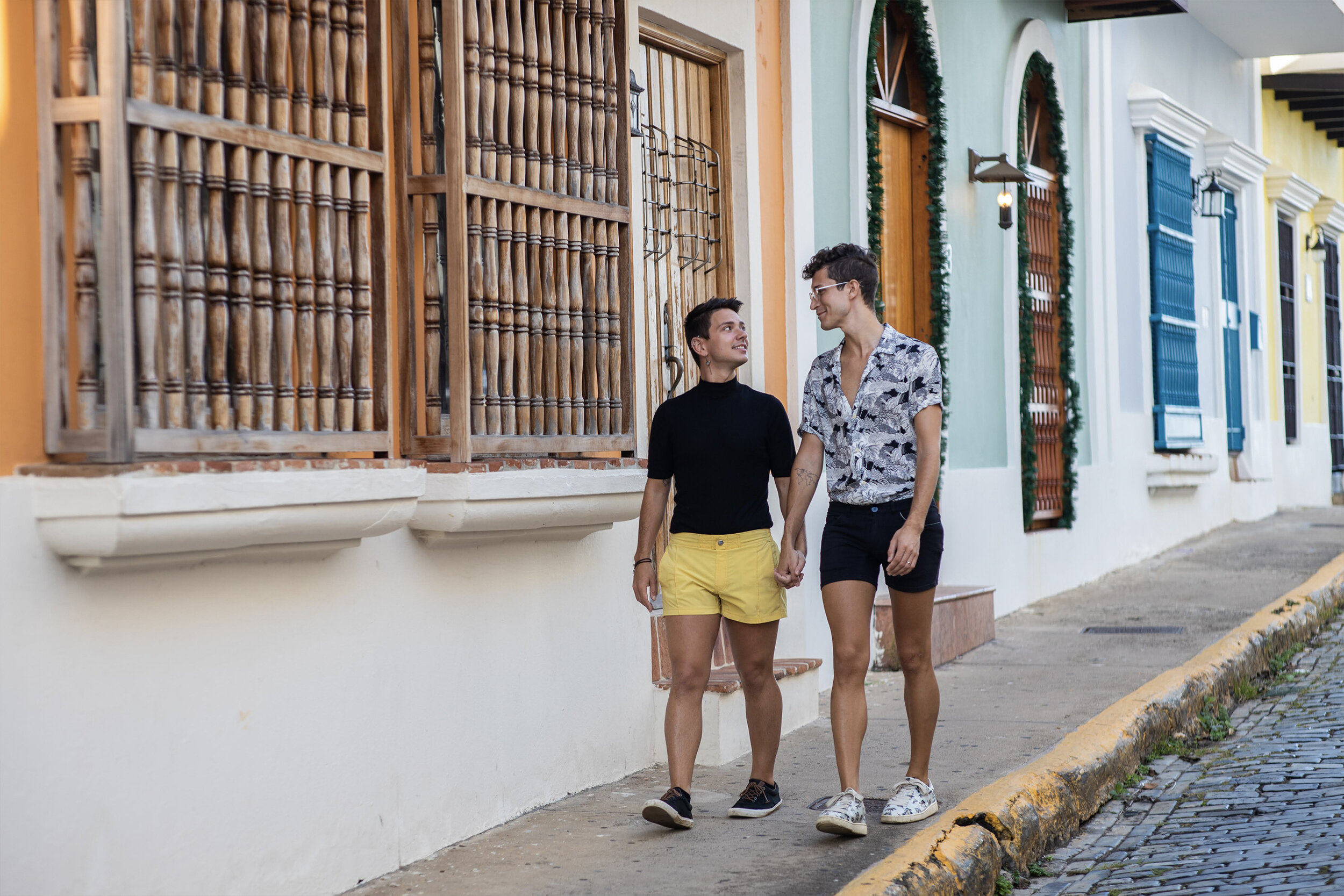
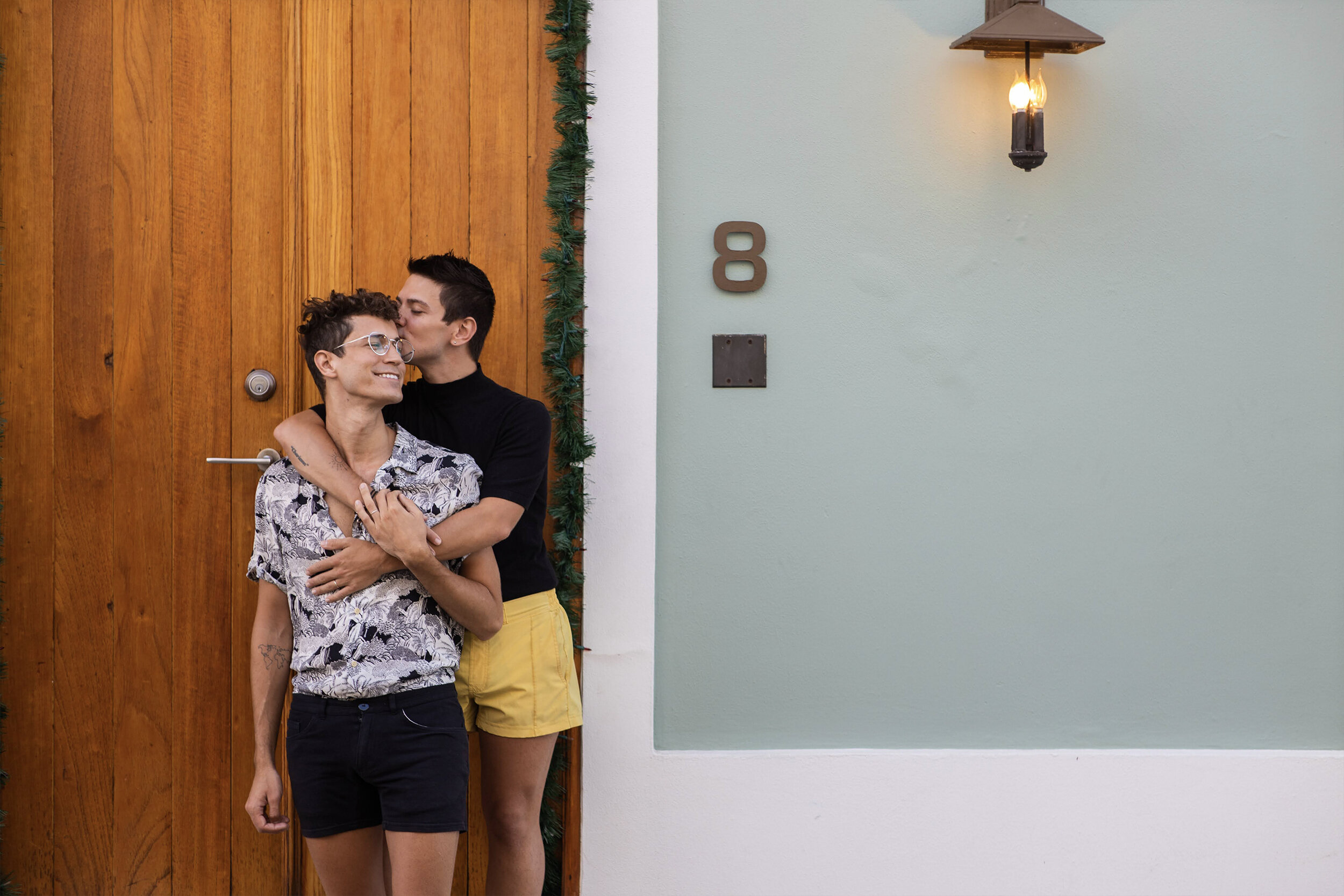
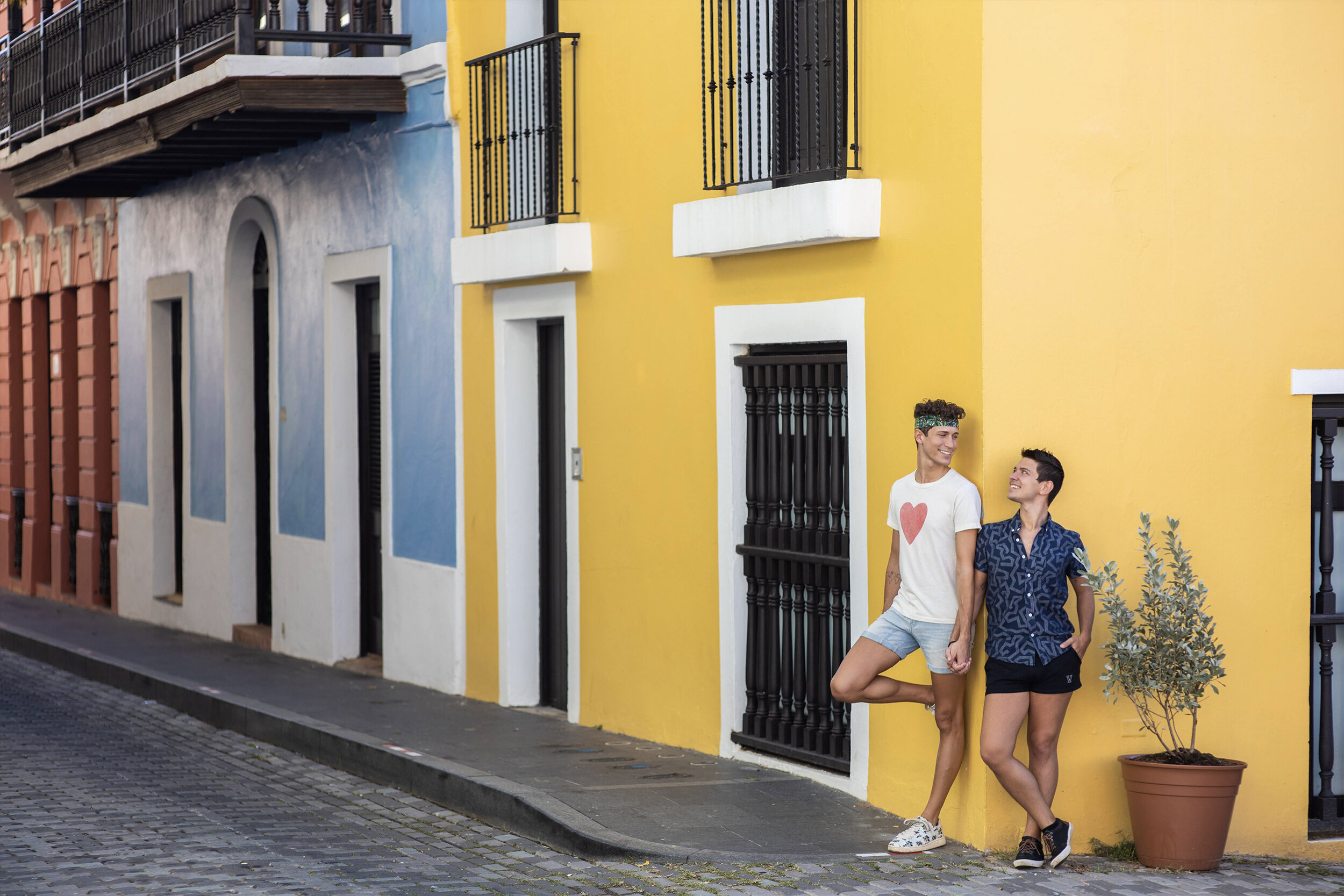
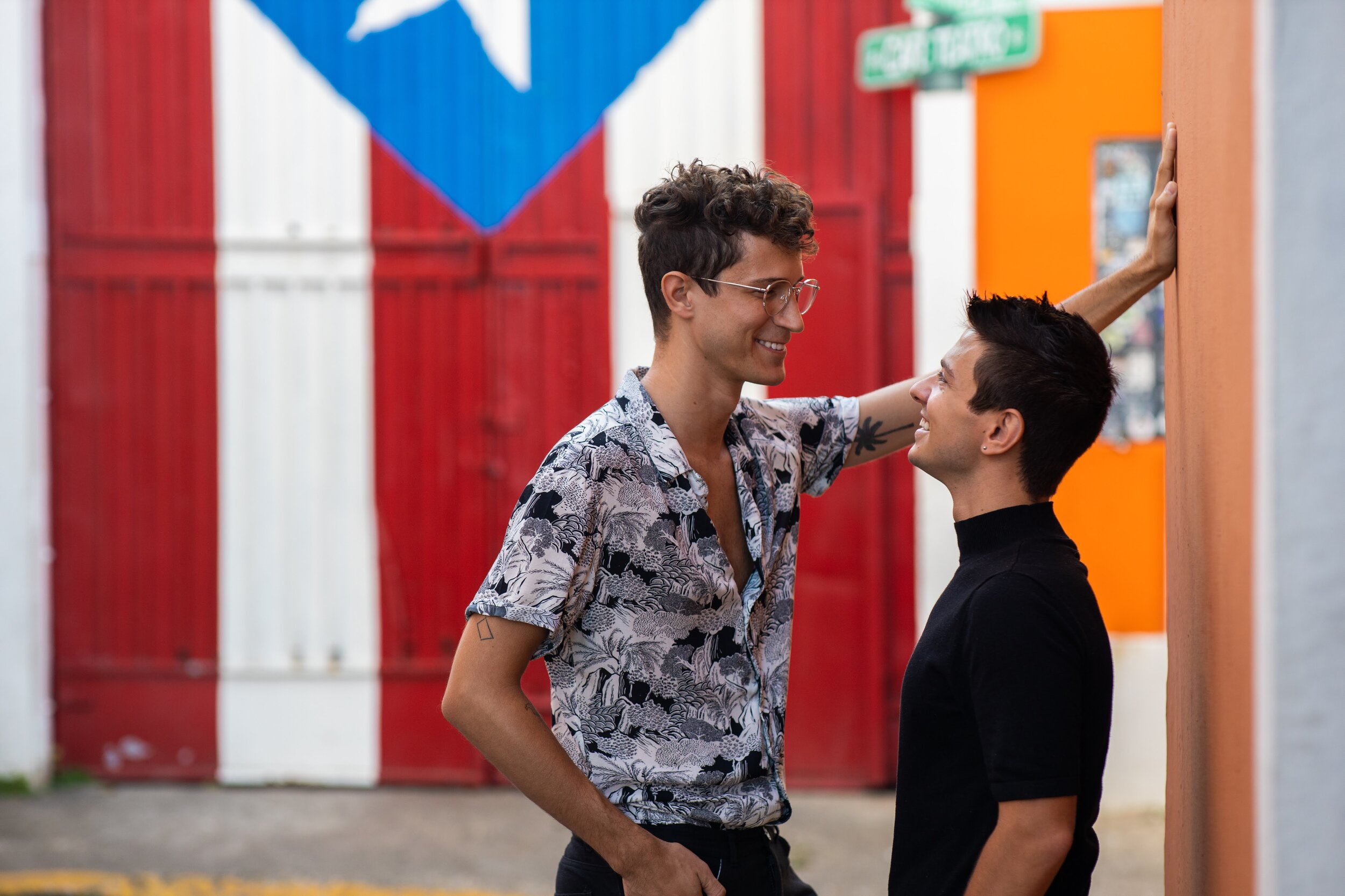
Things to Do
Hire a Photographer. Hire a photographer to take photos of you around the old town during the morning or evening golden hours. There are a number of options available though Airbnb Experiences. We booked with Raul and couldn’t have been happier with the outcome!
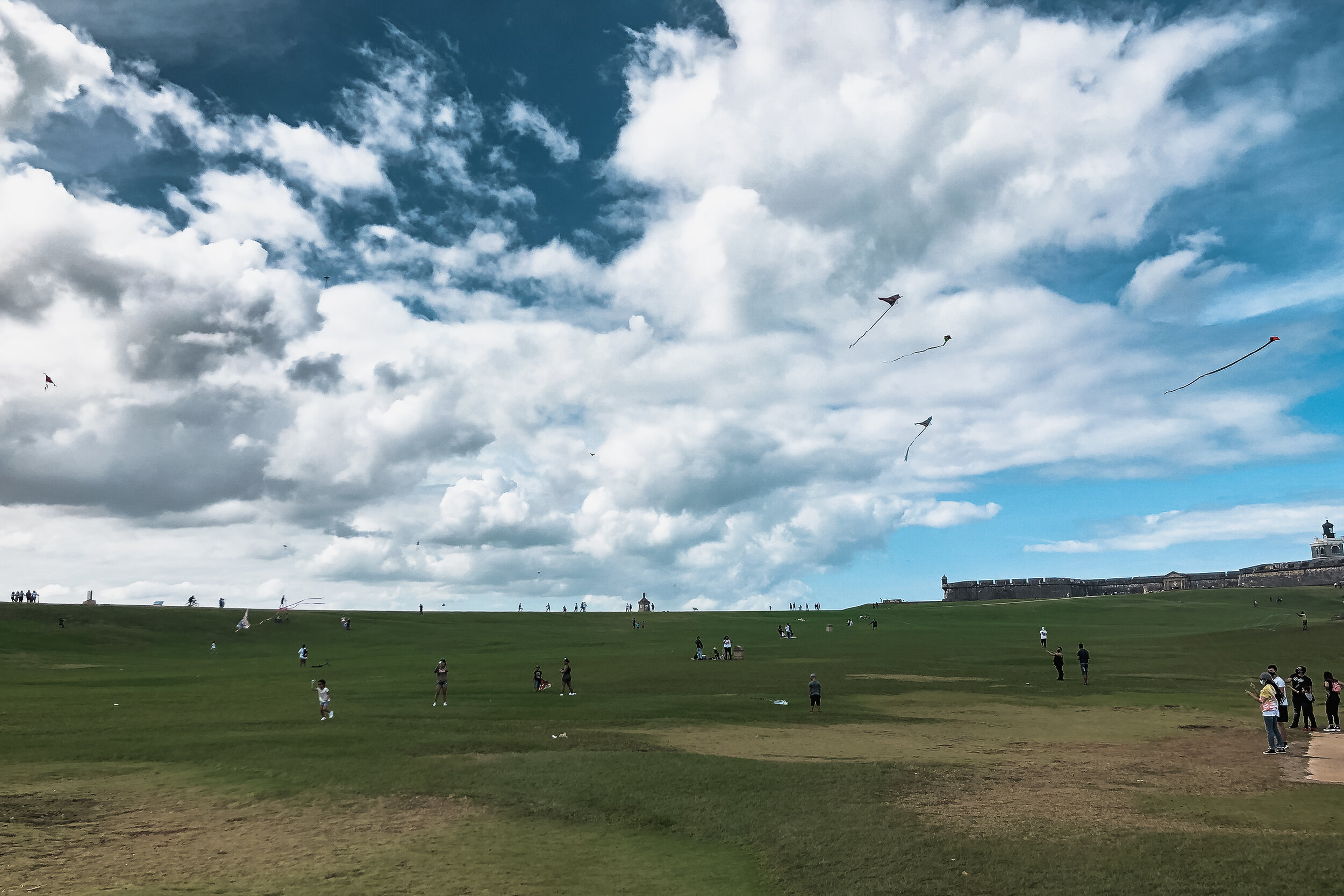
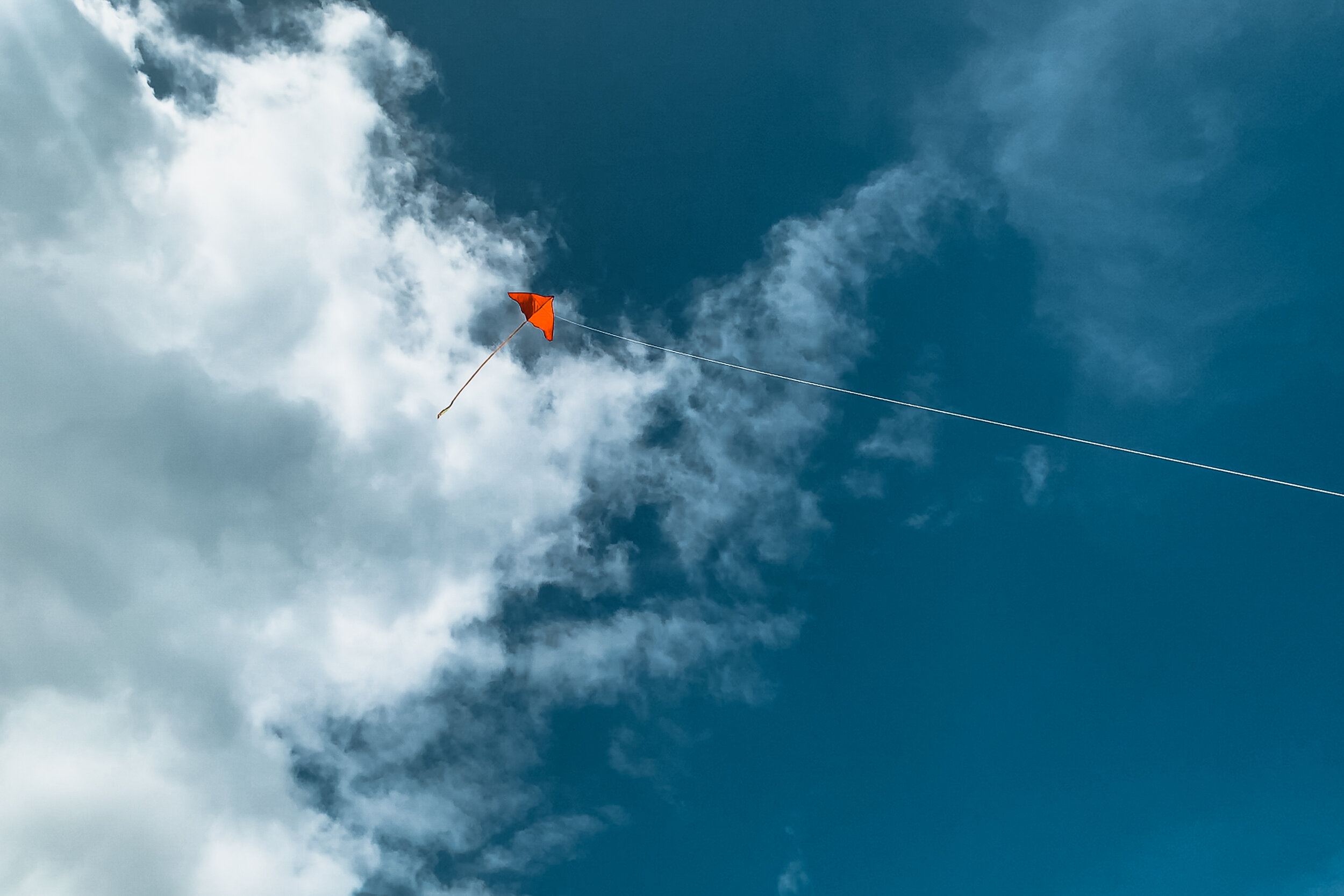
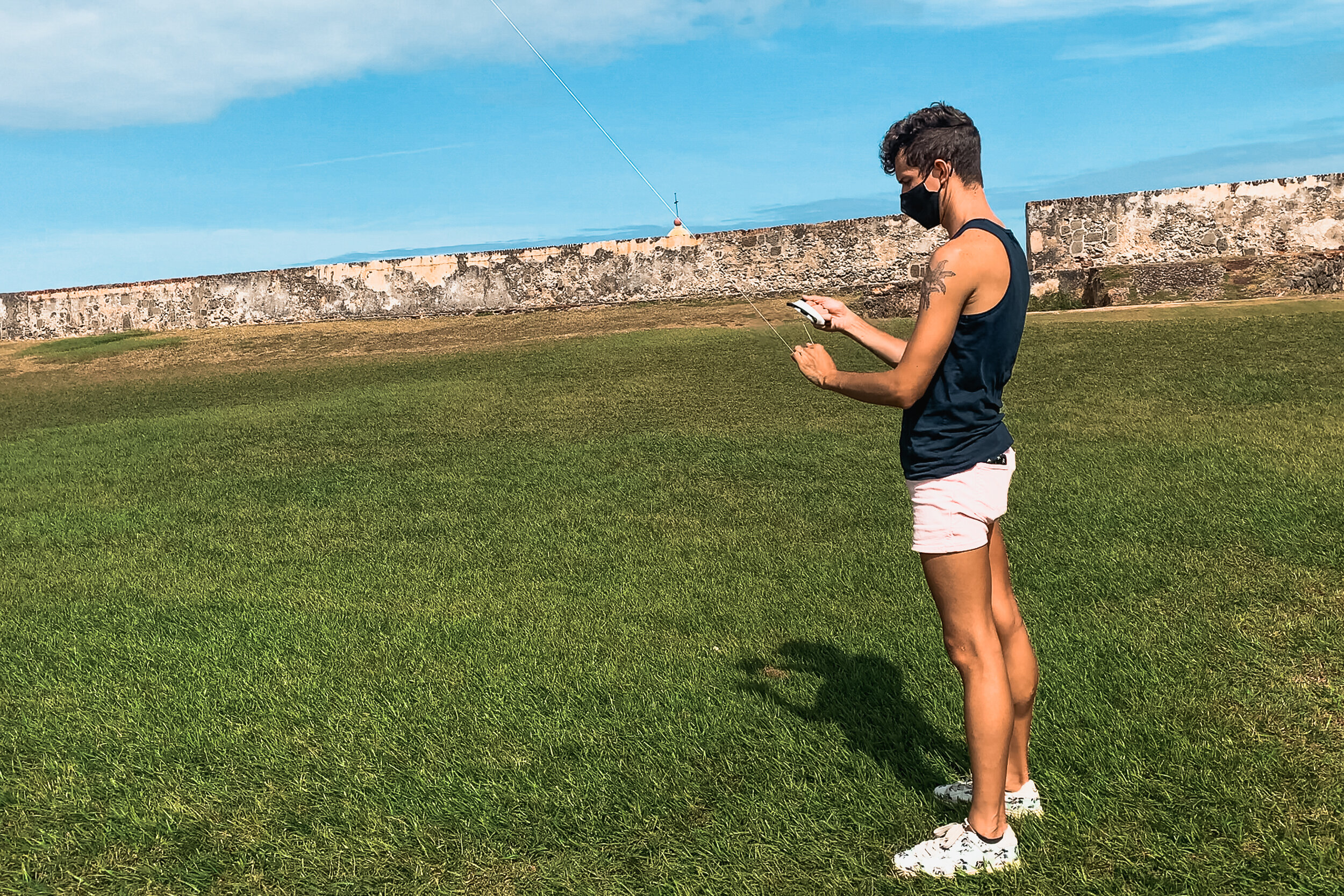
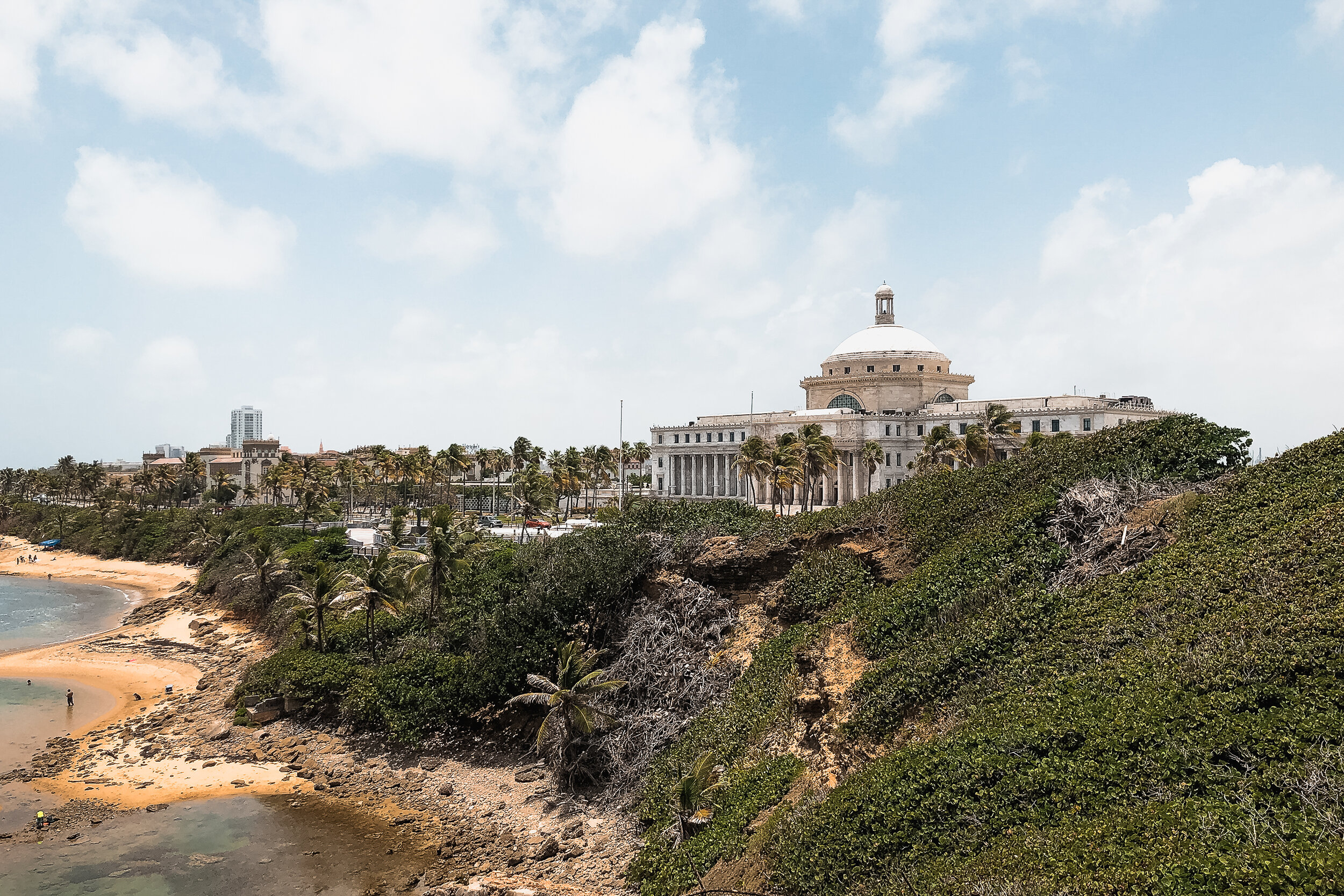
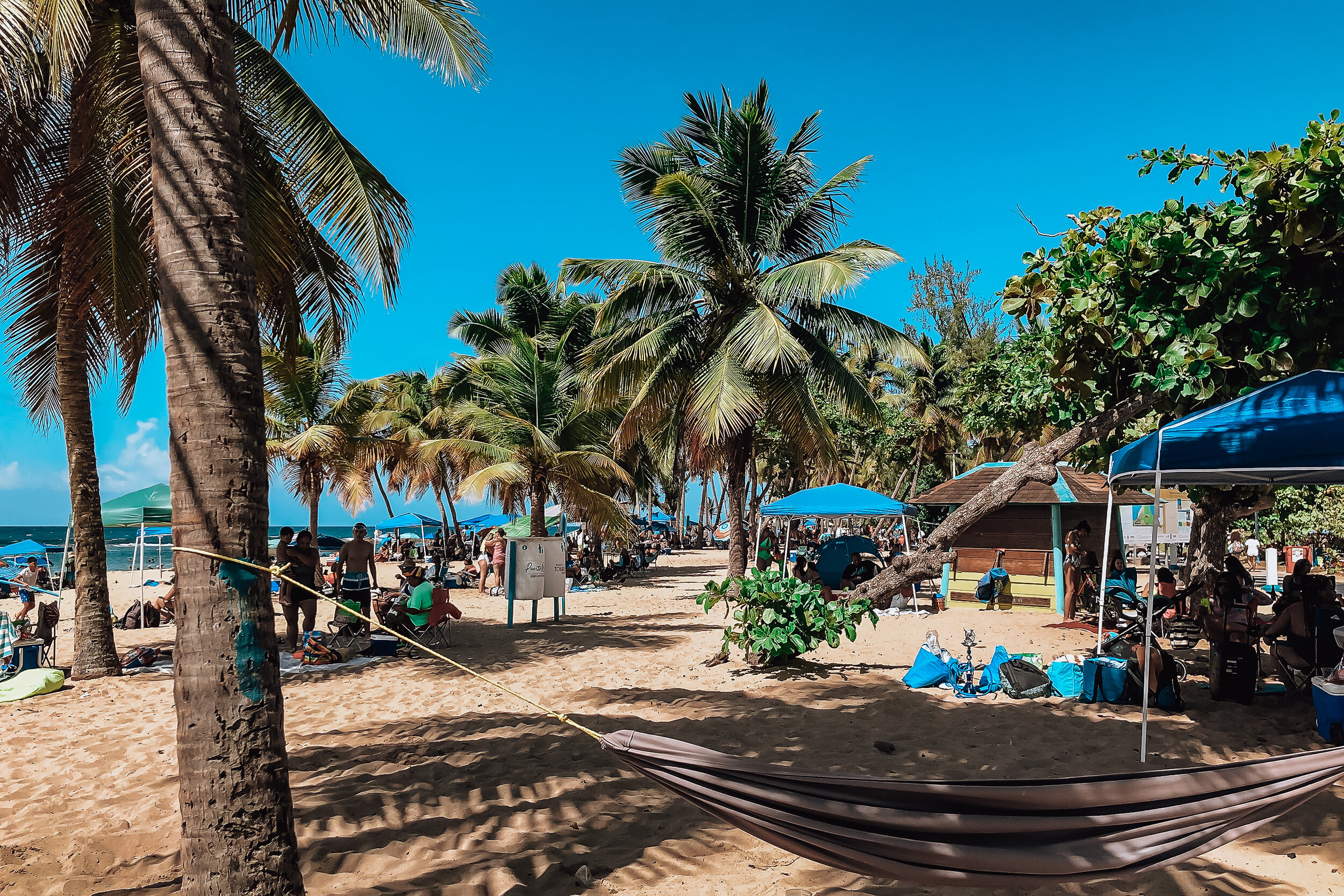
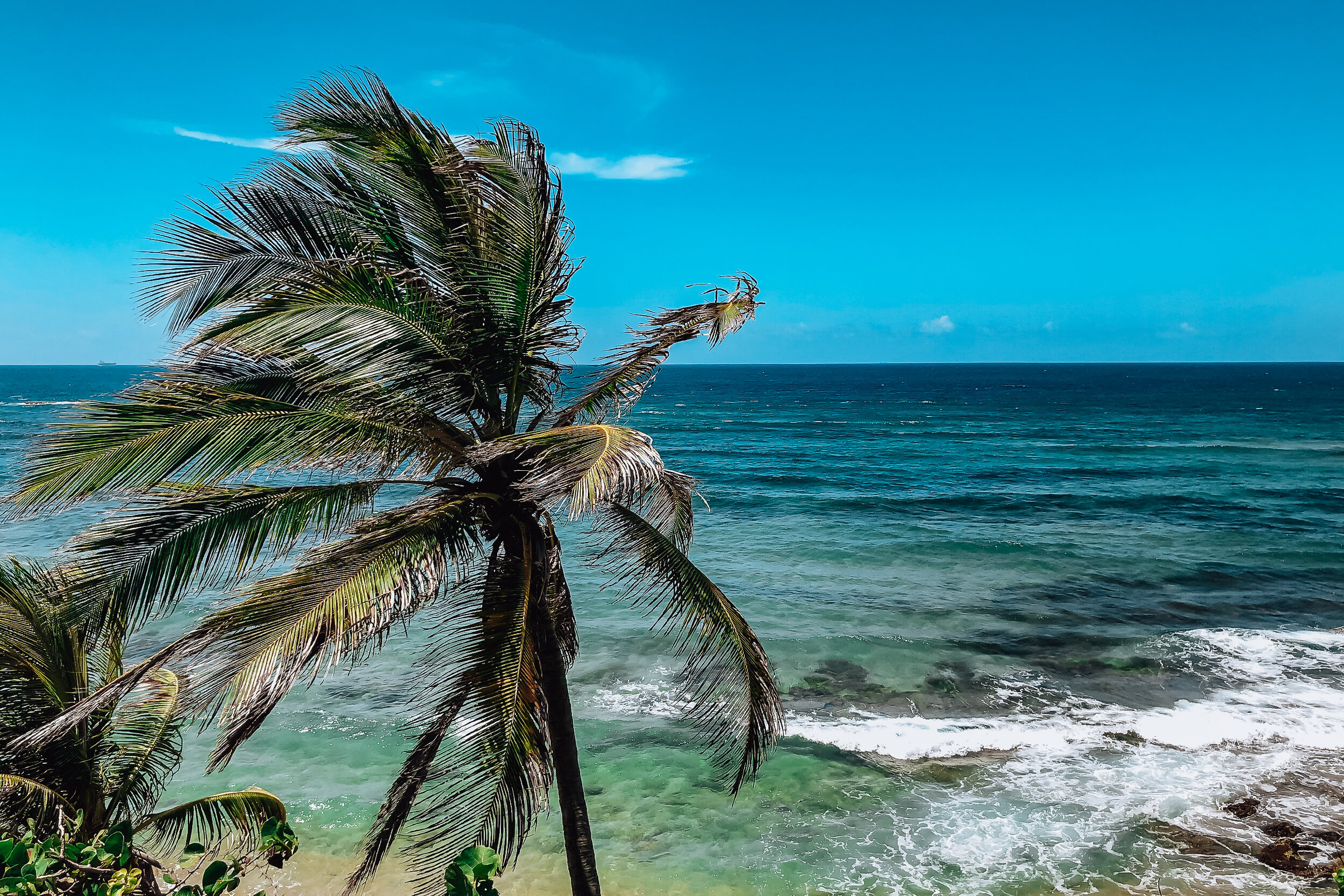
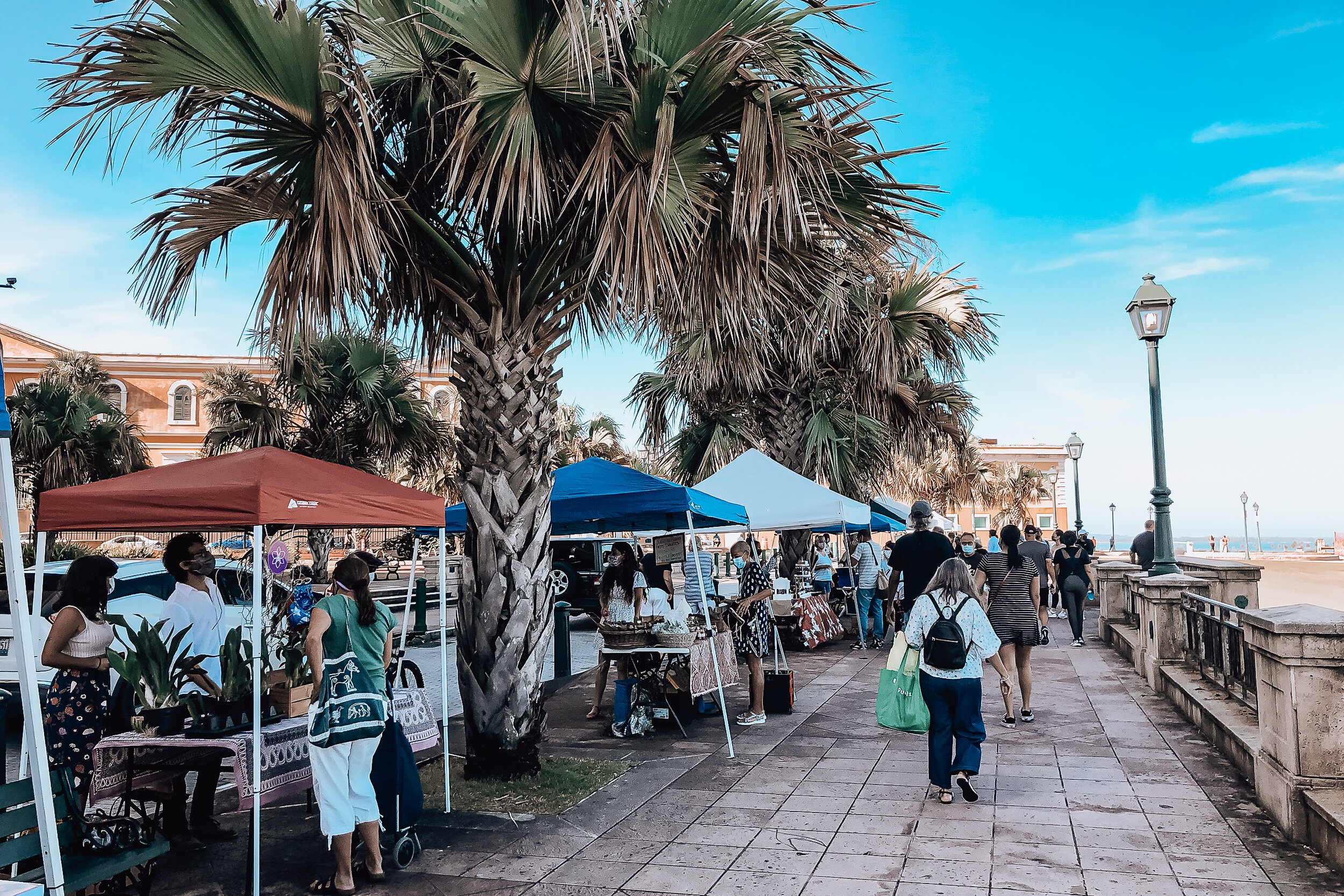
Fly a Chiringa. The ocean breezes above the lawn in front of El Morro make it a great location and fun Sunday afternoon pastime. Kites can be bought from street vendors adjacent to the lawn on Calle Norzagaray.
Walk to the Beach
Playa Peña. The closest beach to OSJ, located on the other side of Castillo de San Cristobal. It is a cute sand and rock beach below the cliff in front of the capitol.
Playa El Escambrón. Less than 15 minutes from OSJ, it’s a popular beach for swimming, snorkeling, grilling and sunbathing.
Visit the Farmers Market. Located in front of the San Juan Museum every Saturday morning. It’s a great spot to purchase local produce, fresh baked breads and flowers.
The Food Scene
A huge part of the culture in Puerto Rico involves eating, drinking and getting together with others. With that in mind, there are so many great places to eat and drink.
Pro tip: It’s best to make a reservation whenever dining out in OSJ.
Restaurants
La Garita . A restaurant and bar serving Puerto Rican dishes and rum cocktails with a view overlooking La Perla. Ask for a Pina Colada made with a double shot of Don Q, Puerto Rico’s most popular rum.
El Jibarito. Another restaurant serving Puerto Rican dishes. Come here for the whole fried fish and mofongo.
T•tuan. A lively restaurant on the wall with live bands and drag shows on the weekends. Try the mahi mahi sliders, crab empanadillas and coconut grilled shrimp.
San Se Marisquería. Close to the bars on San Sebastian, this is a great spot to eat before or while enjoying the nightlife.
La Madre. A Mexican restaurant with delicious tacos. Eat outside on the pedestrian tree-lined street.
Cayo Caribe. A small local chain of restaurants serving Caribbean seafood. Try the Salmorejo (stewed land crab and tomatoes)
Ladis. A famous seaside restaurant built into the cliff between OSJ and Condado. Come here for the food, cocktails and ocean view.
Señor Paleta. A popular spot to buy fruit and dessert popsicles mid-day or after dinner.
Cafes
La Carreta. Come here for the variety of sweet and savory breakfast dishes. Try a mimosa made from freshly squeezed OJ.
St Germain. A creative and vegetarian friendly breakfast spot.
La Bombonera. A historic restaurant and diner known for their Mallorca, soft, buttery sweet and fluffy bread rolls often dusted in powdered sugar. Try them alone or pressed in a sandwich grill.
Caficultura. A good spot for breakfast and coffee, have the Mallorca con Guayaba (guava).
Pilao Bakery-Cafe. Bakery with large portion breakfasts and coffee
Bars
La Factoria. A famous cocktail bar great for music and dancing Salsa. It’s cash only and be prepared to order several drinks.
La Cubanita. Connected to La Factoria, this bar is offers equally as good and unique cocktails. Our favorite section is the hidden bar up the stairs and though a door to the right.
El Batey. The definition of a dive bar and open late. The walls and lights are covered in graffiti, notes, cash and napkins left behind from past visitors.
La Casita. A pink house and outdoor cocktail bar serving rum and tiki drinks overlooking the bay. It’s a nice escape from the busy streets or to end the night.
La Verguenza. This multi-level bar overlooks La Perla is the center of nightlife in OSJ. The nightly party spills out into the streets and continues early into the morning.
La 39. An unofficial roof top bar past the basketball courts in La Perla serving Medalla an inexpensive local beer served everywhere across the island. People often flow between here and La Verguenza.
La Terraza De San Juan. This hotel has a large rooftop bar with 360 views of Old San Juan. Buy a drink from the street level bar and walk up the flight of stairs then sit back and relax in one of the lounges or tiny infinity pool.
Cannon Club. A dueling piano bar with live parrots, multiple levels and eclectic decor. This place is more about the drinks and unique atmosphere than the food.
Explore San Juan!
Though we love Old San Juan, it’s fun to venture outside of the old town and experience life and culture beyond its historic walls.
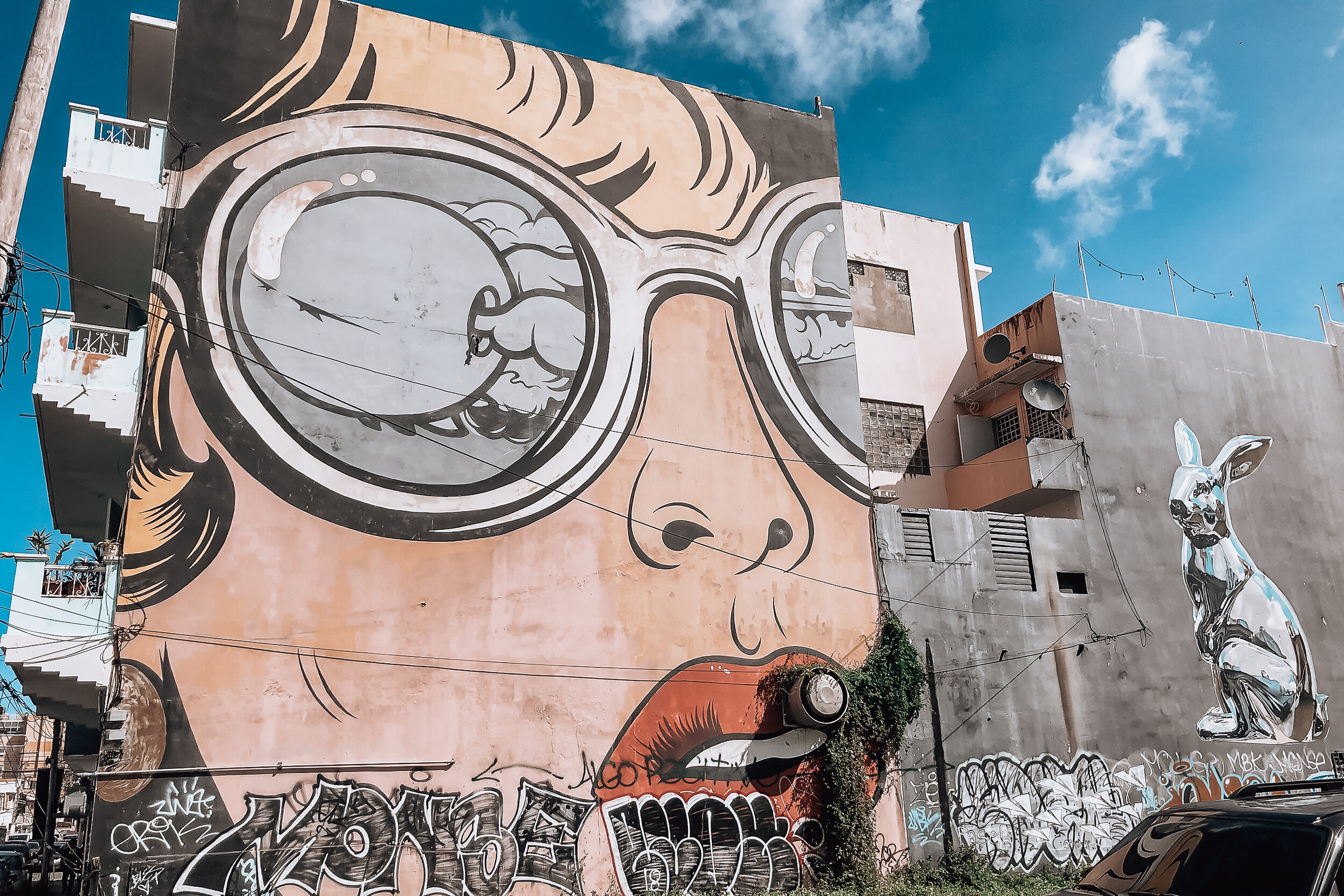
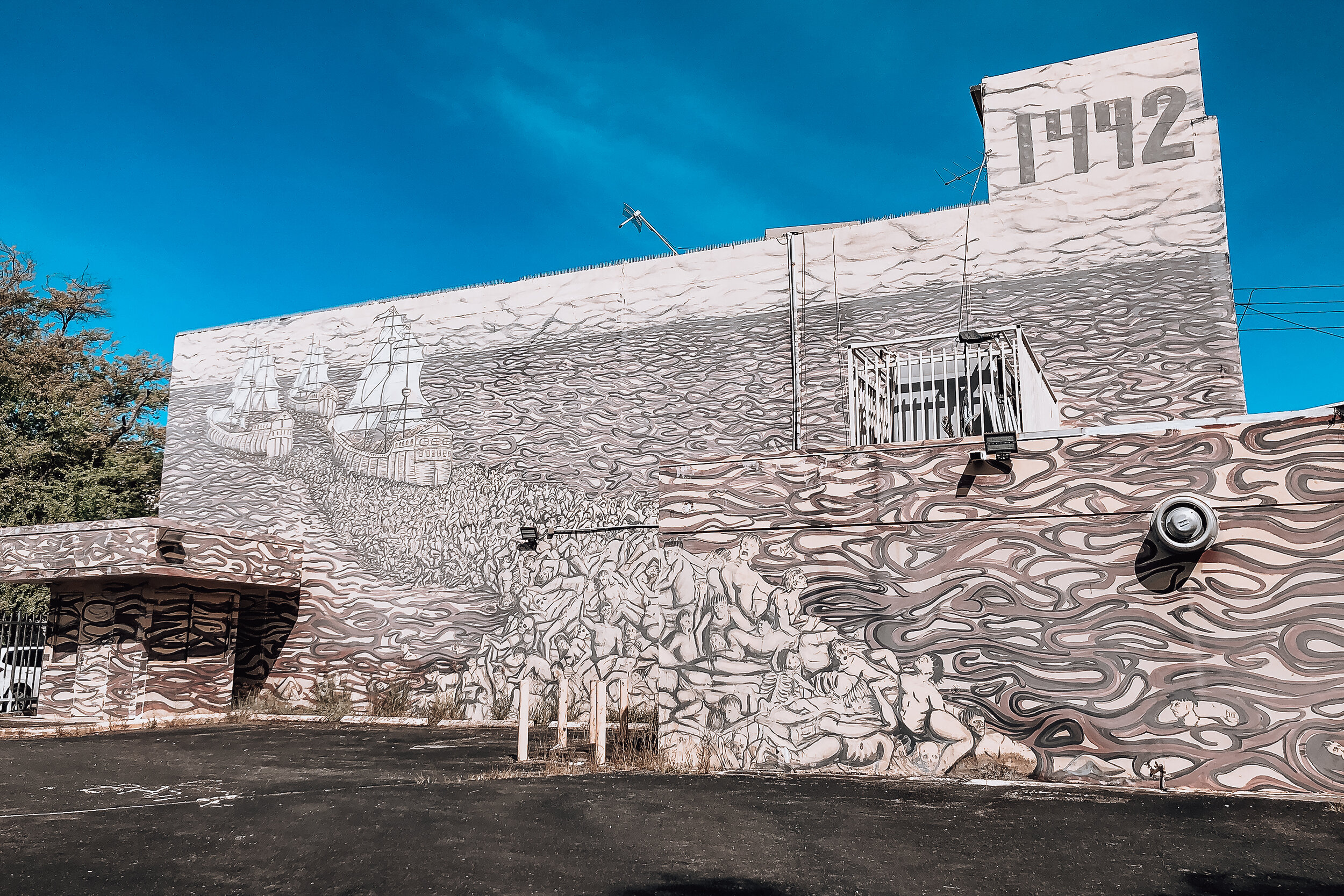
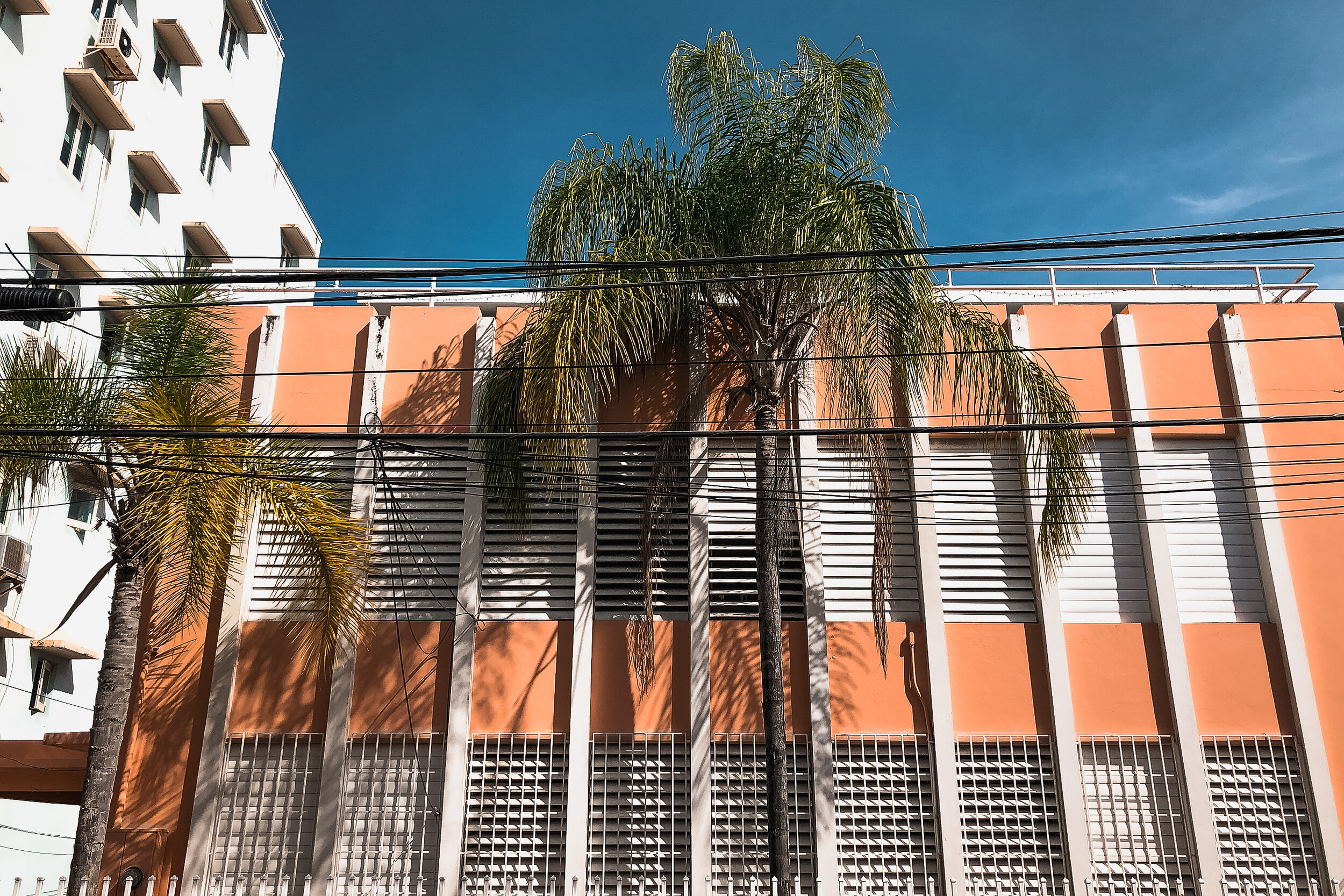

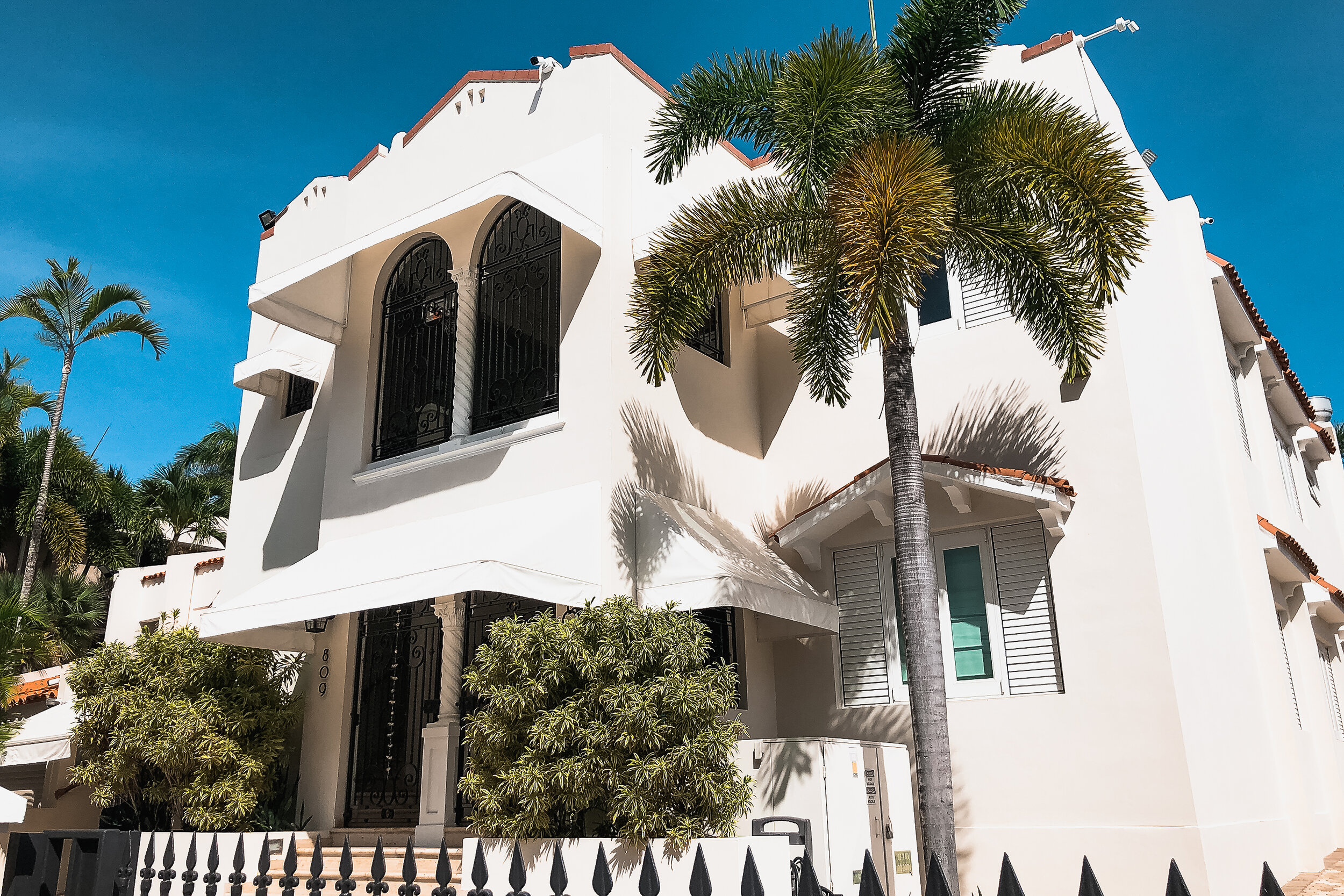
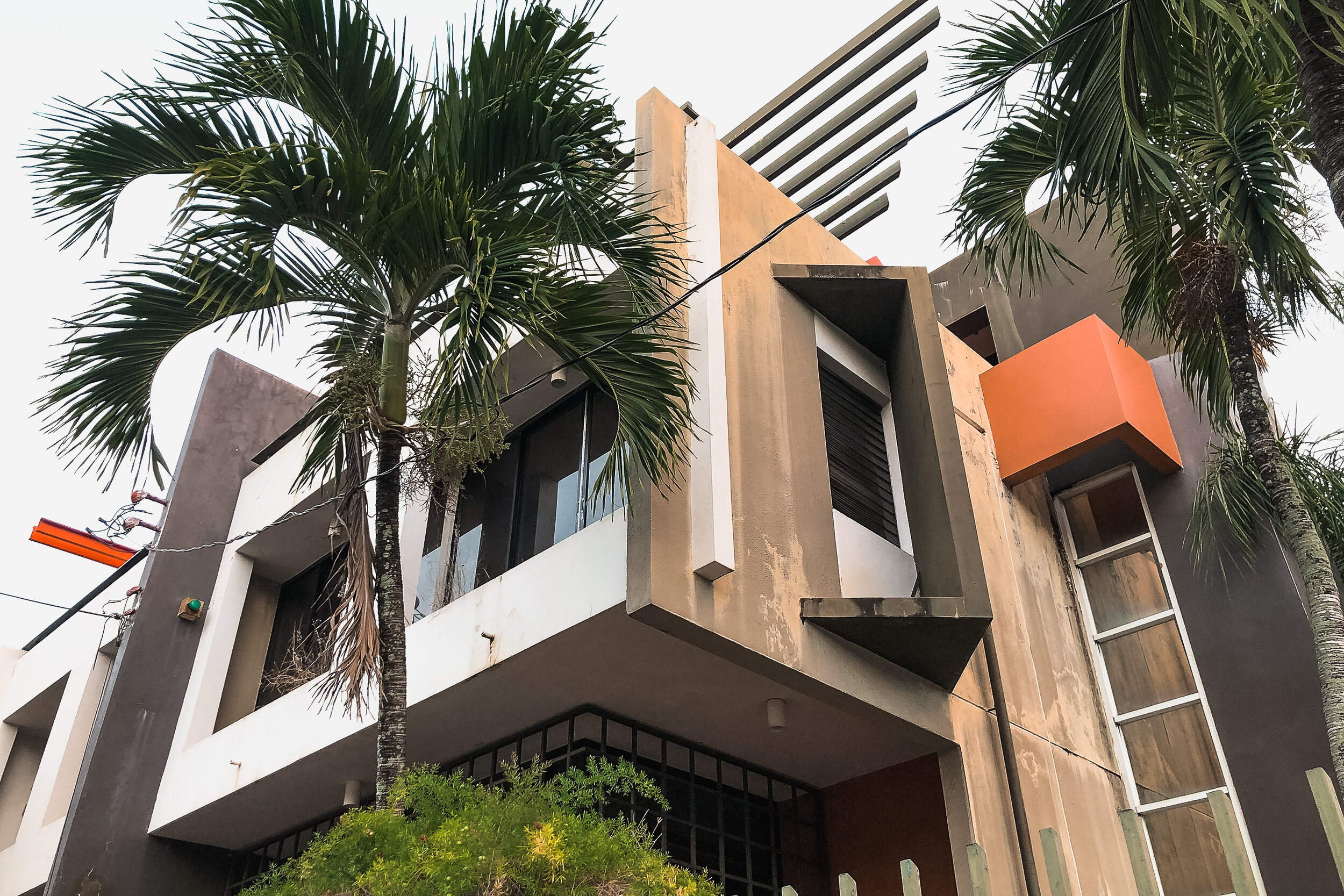
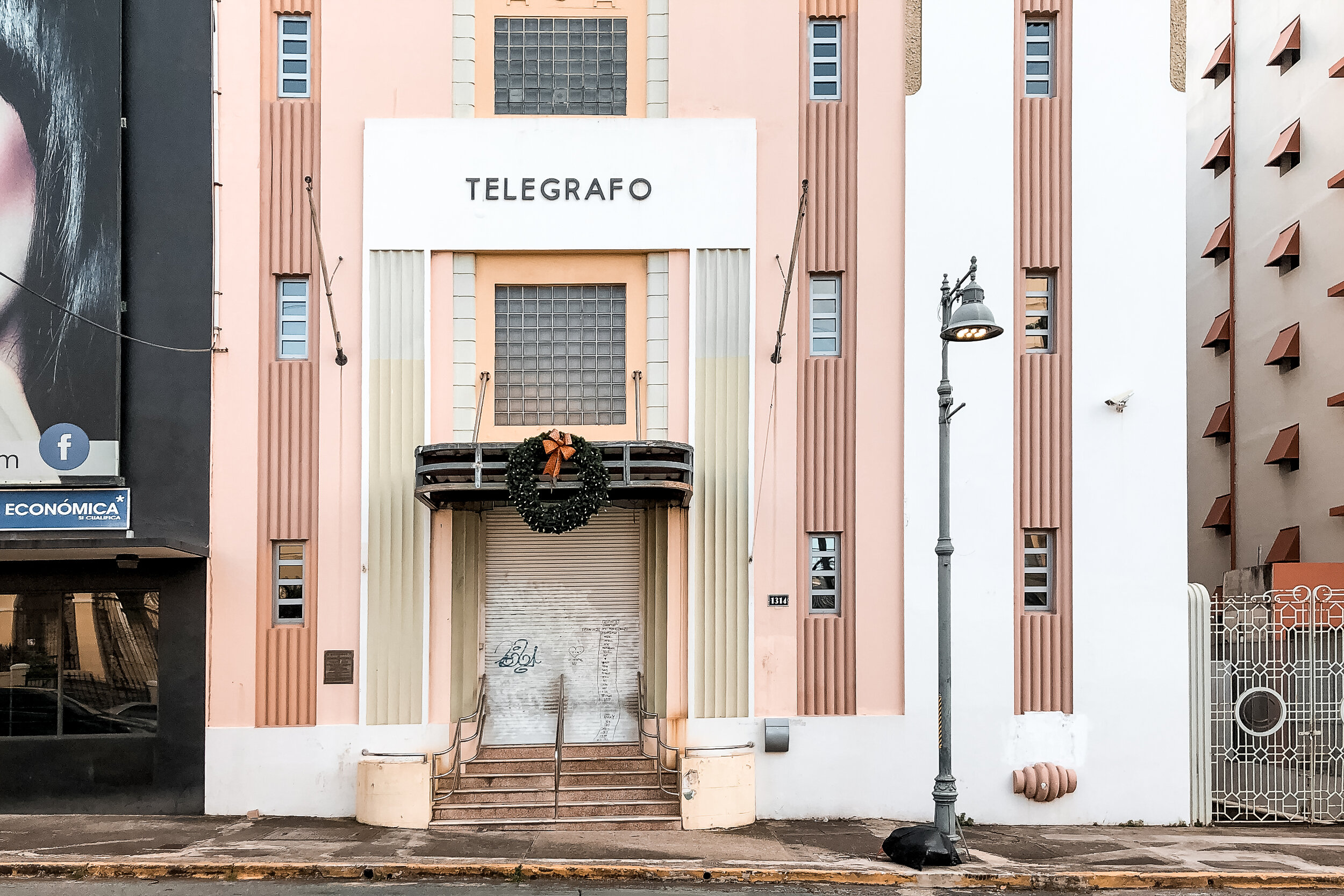
Neighborhoods & Streets
Santurce. A trendy and gritty area of San Juan. It’s an affordable place to stay, admire the graffiti & murals, visit art museums and experience local culture, cuisine and nightlife.
Condado. Popular for hotels, restaurants, bars and beaches. It’s a nice place to relax during the day before going out at night.
Ocean Park. A trendy yet local neighborhood popular with the LGBTQ+ community and younger crowds. Come here for the variety of restaurants, nightlife and beach.
Miramar. A residential neighborhood with historic homes and buildings built in The Spanish Colonial Revival style. It’s central to Old San Juan, Santruce and Condado.
Calle Loíza. Ocean Park’s main street for restaurants, food halls and bars. A good street to walk for breakfast and lunch options. Loíza Brinca. Famous corner building featuring the Puerto Rican flag
Calle Cerra. A gritty street in Santurce with many large murals and graffiti works. The street and surrounding neighborhood has many cafes & bars to grab a coffee or drink while exploring.
Sights & Museums
Fortín San Jerónimo de Boquerón. A small fort at the mouth of the Condado Lagoon. The visiting hours are infrequent due to repairs post Hurricane Maria. It’s worth visiting if open.
Puente Dos Hermanos. The bridge crossing the Condado Lagoon connecting to Old San Juan. It’s beautiful to walk across with great views. There is also a ledge making it easy to jump from into the lagoon. The Condado side has a small sandy beach, Playita del Condado.
Museo de Arte de Puerto Rico. A well curated and diverse collection of Puerto Rican art and history. After touring the galleries, walk through the sculpture garden.
Museo de Arte Contemporáneo de Puerto Rico (MAC). A contemporary art museum with rotating galleries specific to social movements, local artists and Puerto Rican heritage.
Things to Do
SUP or Kayak in Laguna de Condado. Tour companies based around the lagoon offer SUP and Kayak rentals for $20/hour. The lagoon is a boat free place to spot eagle rays, star fish and sea turtles. We booked though VIP Adventures Puerto Rico.
Dance Salsa. Take a beginners salsa class before dancing in the clubs. We took an Airbnb Experience with Angelina in the Plaza Antonia Quiñones
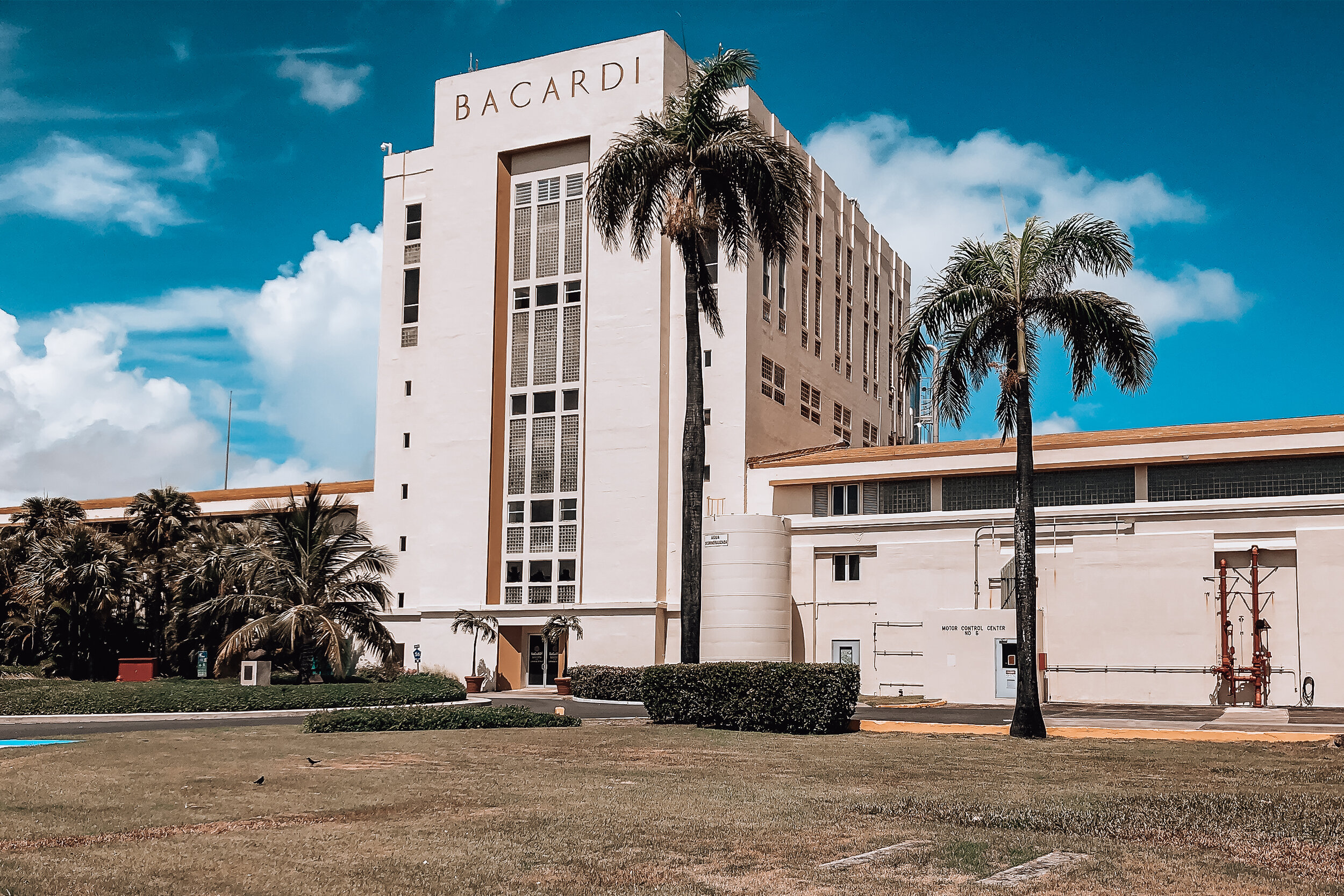
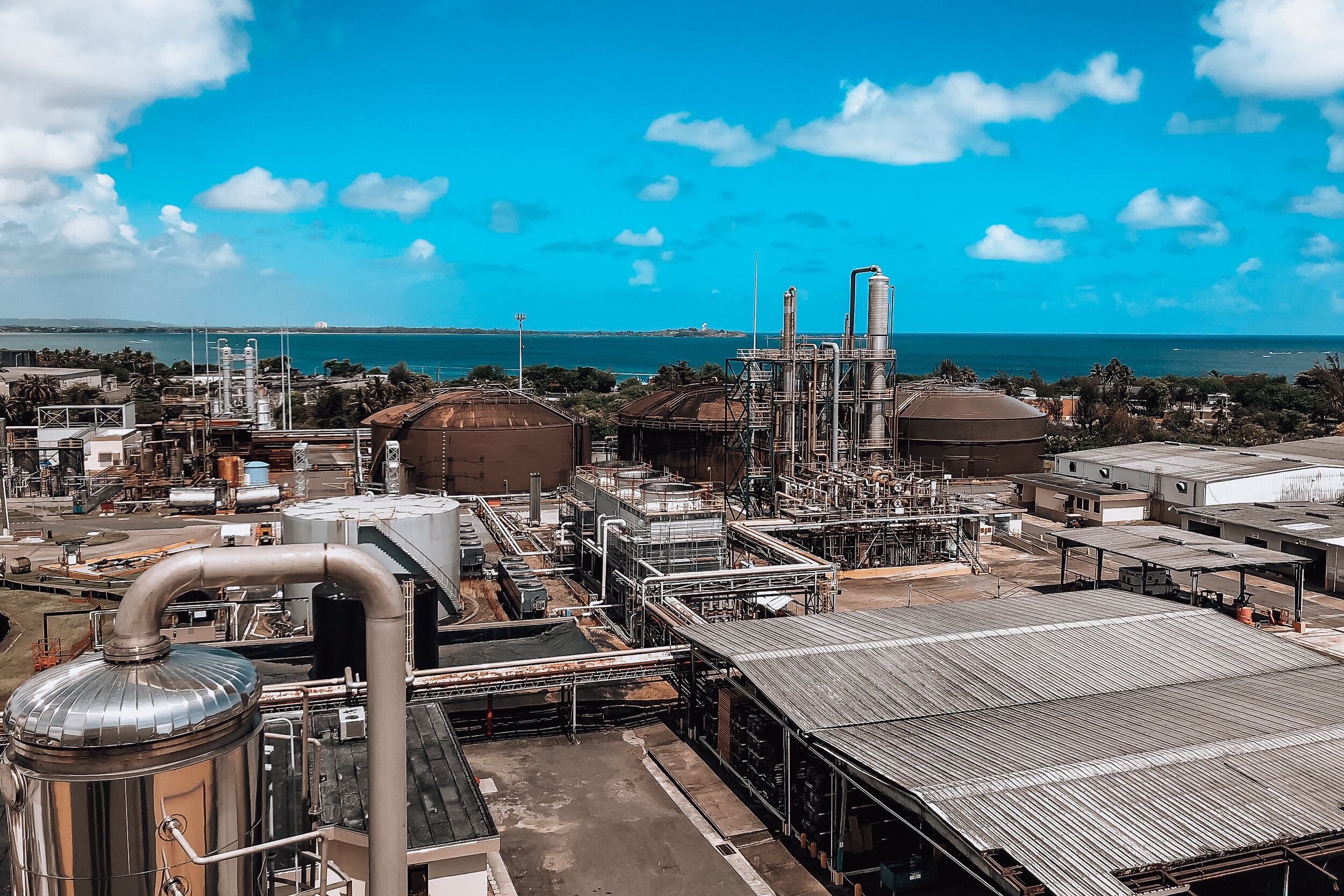
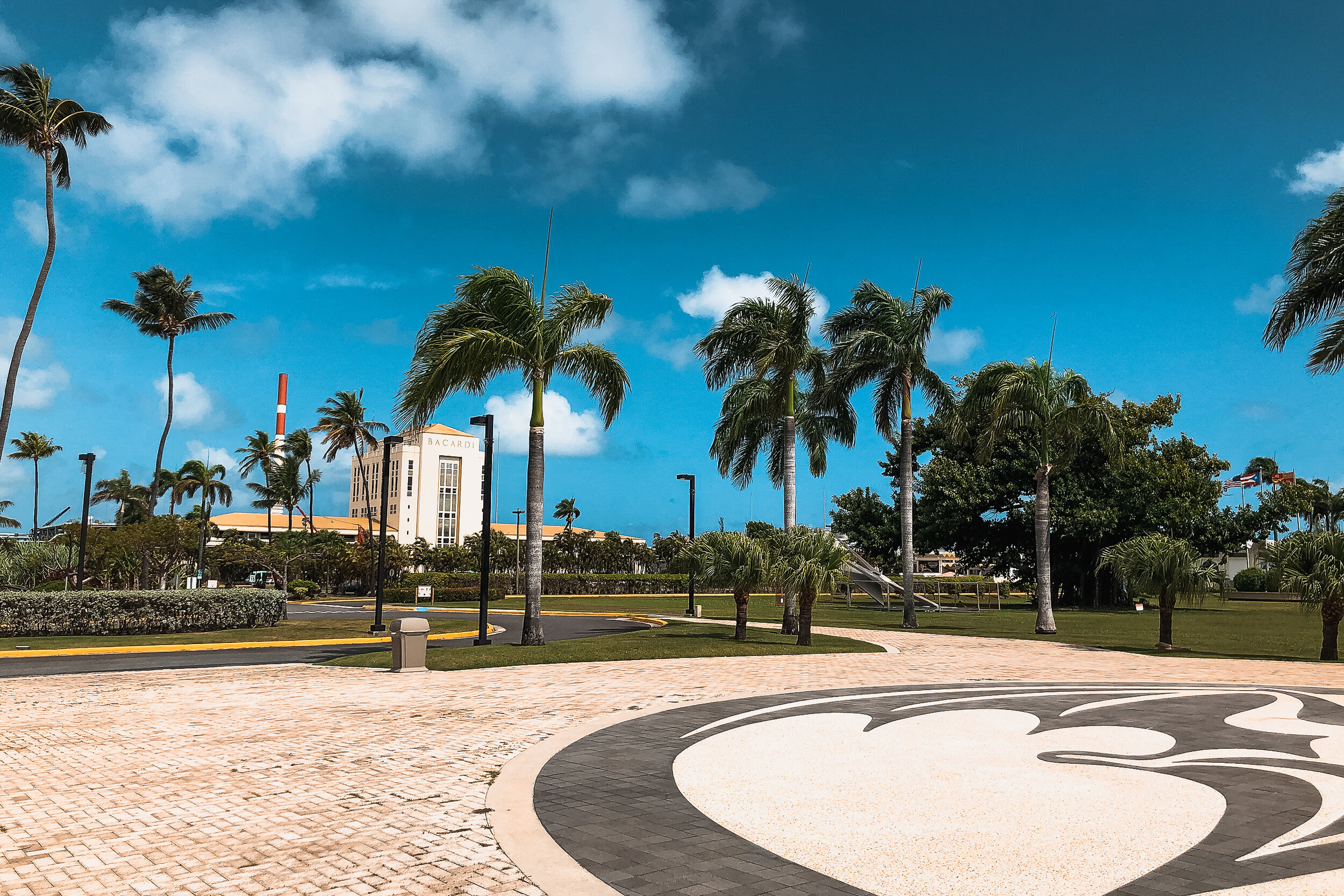
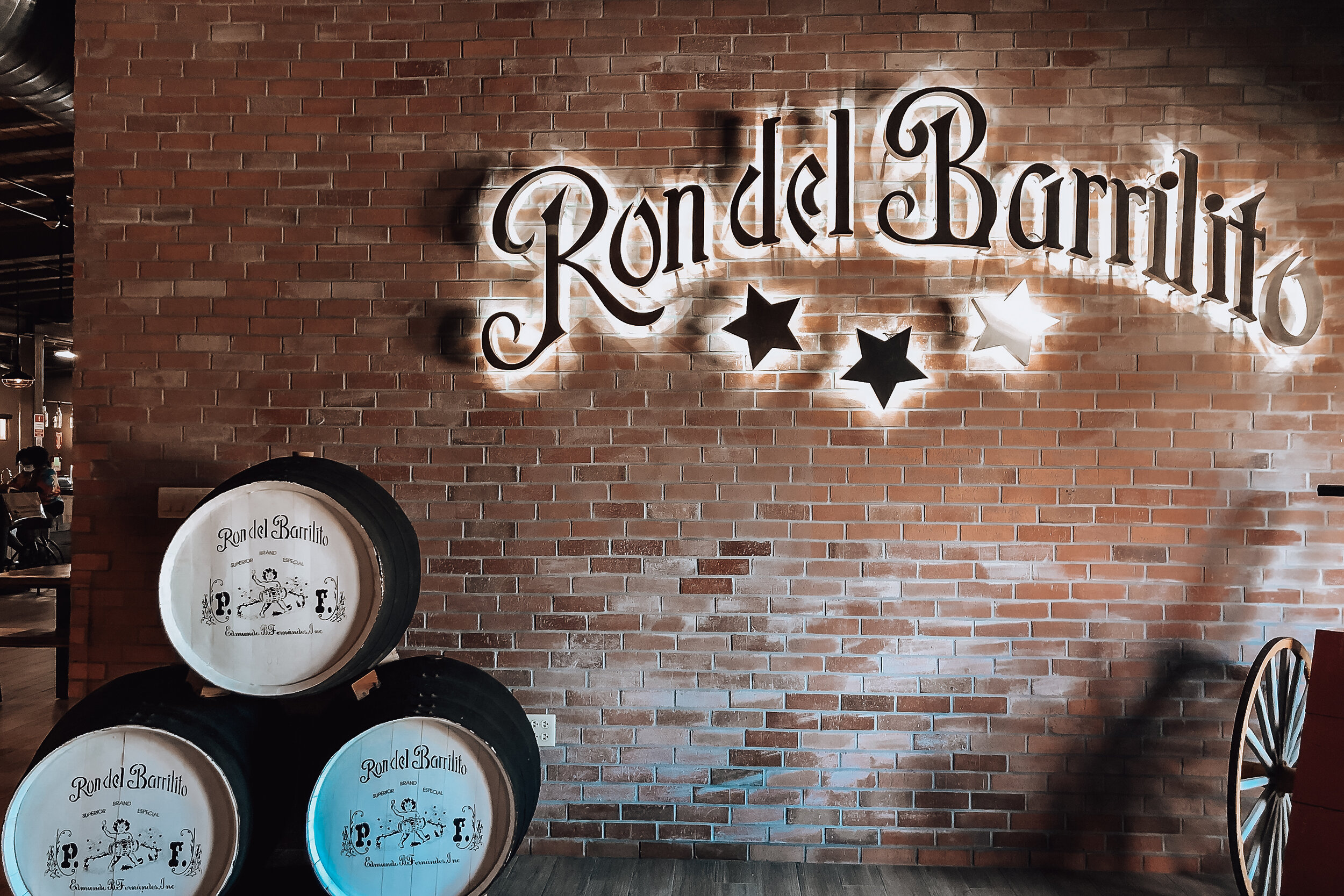
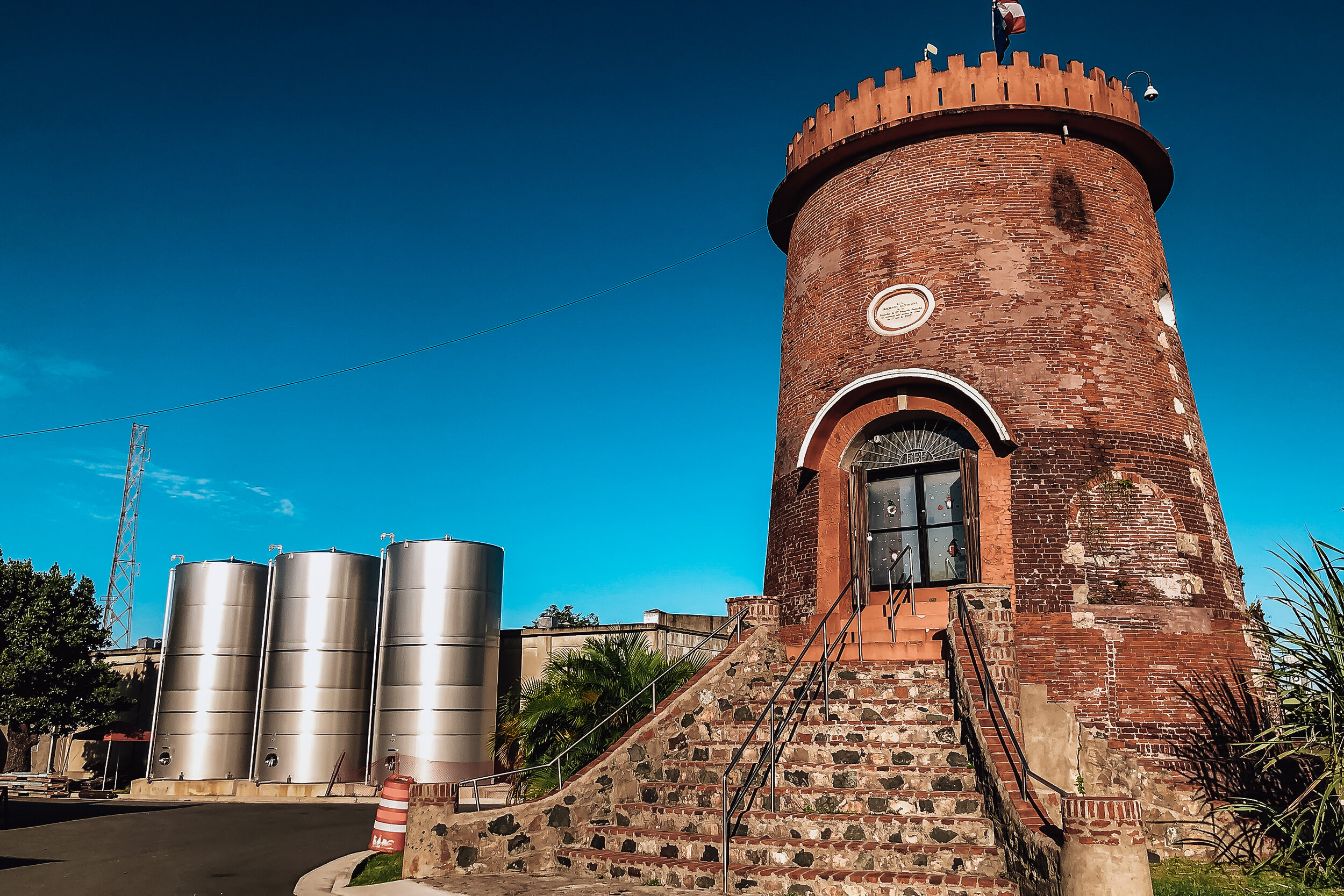
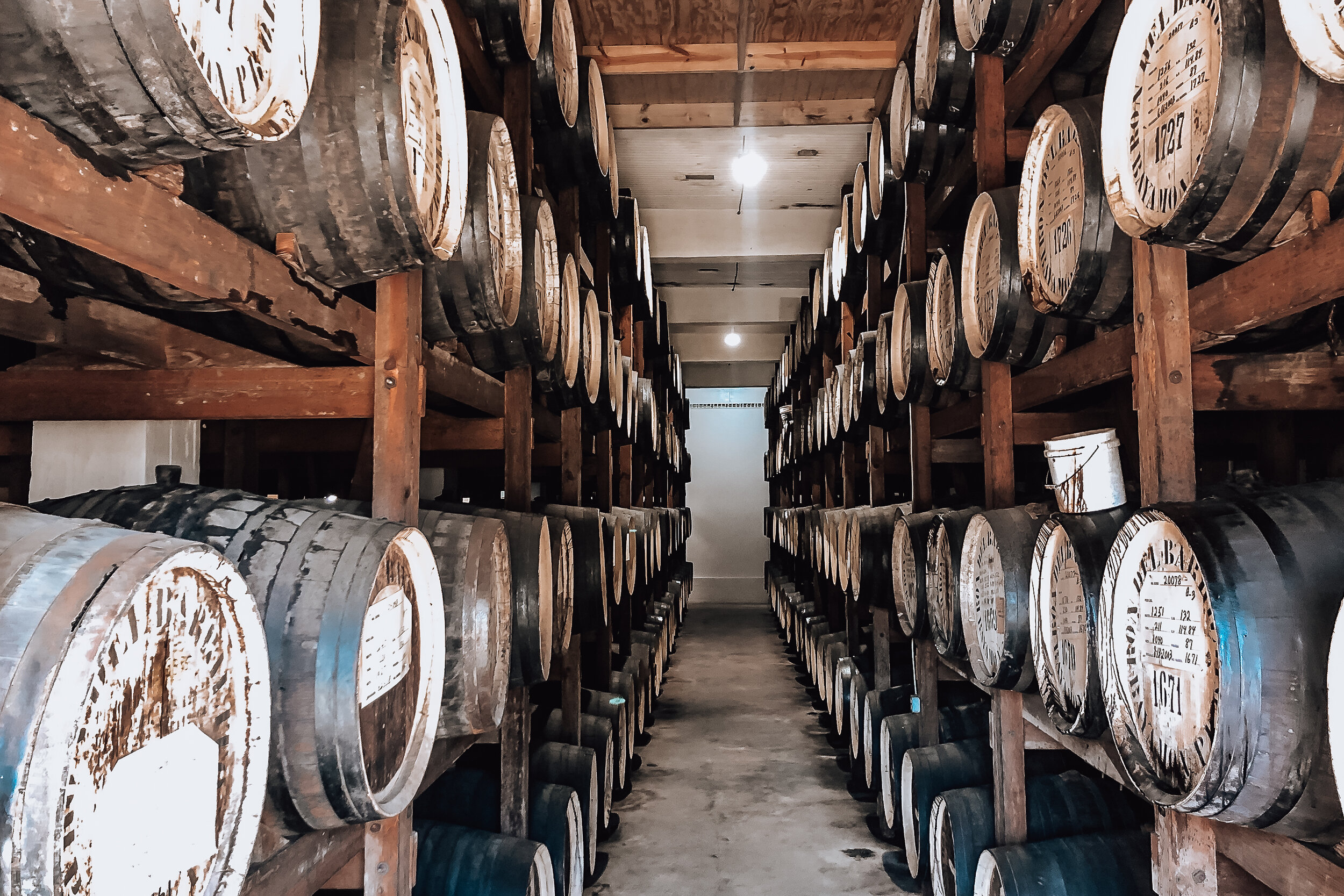
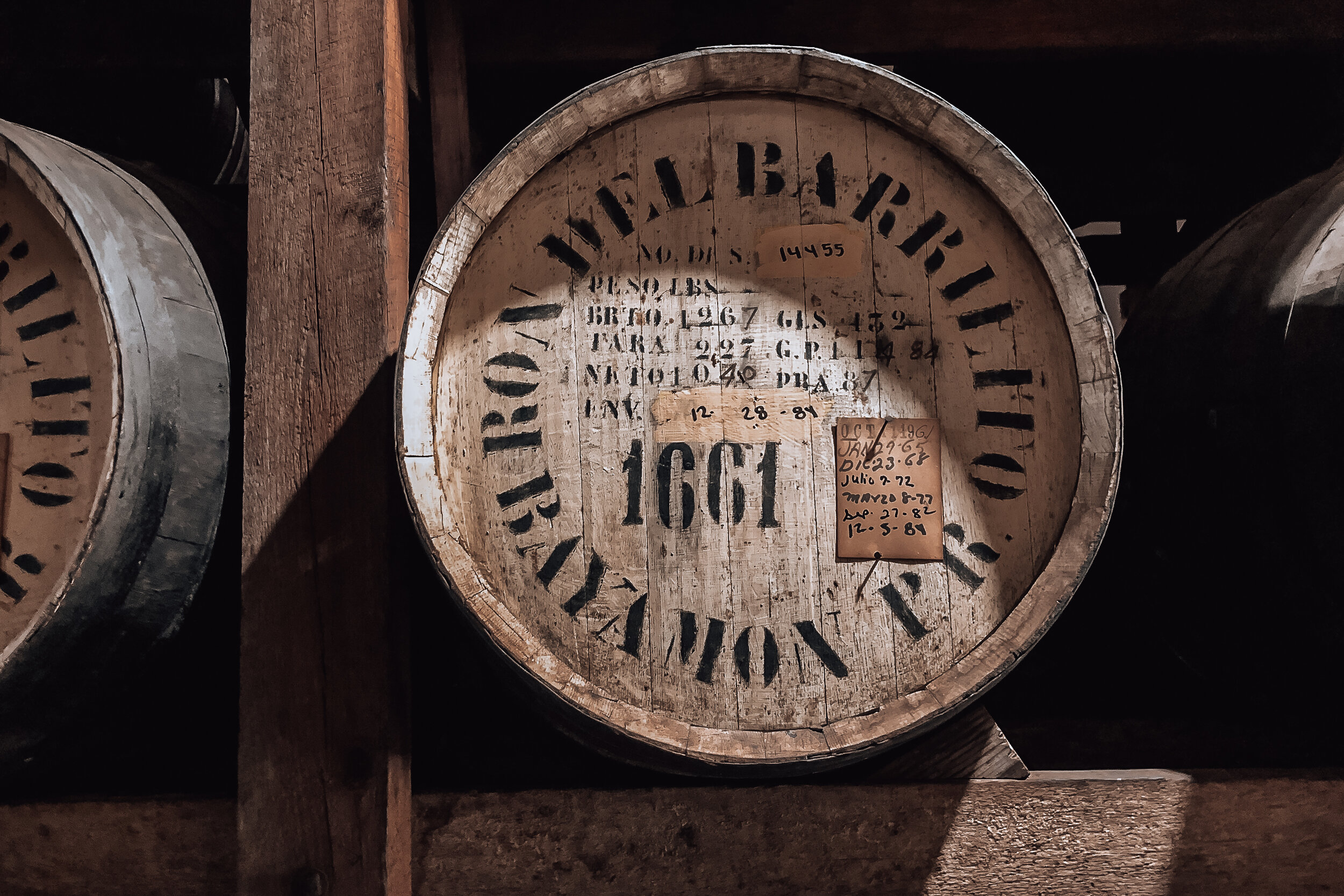
Visit a Rum Distillery. The two distilleries to visit are the Bacardi Factory or Ron del Barrilito. Both offer similar experiences. Bacardi is large scale production while Ron de Barrilito is small batch and higher end. Arrive to a welcome drink, learn about the history of each distillery, their processes of rum making and afterwards take a mixology class, sample aged vintages or simply order cocktails from the bar. Either way, expect to leave tipsy.
Beaches
Atlantic Beach. A sandy beach great for swimming nearby the hotels in Condado. There are no public amenities (restrooms or showers) though vendors rent umbrellas and chairs for negotiable prices. There is frequently a gay section in front of The Tryst Hotel.
Ocean Park Beach. This vast beach is probably the most popular in San Juan. Everyone from locals, tourists, families and couples come here. There are plenty of restaurants, marine sports and activities, chair and umbrella rentals and vendors selling drinks on the beach.
Restaurants
Café Comunión. A coffee shop and breakfast spot. Come for the coffee, open faced sandwiches and fresh sugar glazed donuts
Tostado - Calle Condado. A coffee shop breakfast spot. Come for the coffee, tropical fruit French toast and egg dishes.
Tresbé. Open air restaurant with multiple menus. Come for tacos, sushi, sliders and cocktails.
La Marqueta. An open air food hall with ocean views and palm trees. It’s a great spot to grab a bite or drink after visiting the lagoon or beach.
Paulina Escanes-Gourmandize. A locals restaurant in plain site. Innovative and creative Caribbean inspired dishes, cocktails and deserts.
Wicked Lily. The beach front bar at The Tryst Hotel. Come here for brunch, rent a pink umbrella and join the other gays soaking up the sun.
Bottega. We came for the inventive cocktails and music. We had the Safe Flight, Ritmo Tropica, El In-Muerto and shared the octopus salad. Lucha Libre DJ really added to the vibes of the night.
Food Truck Parks. Quite popular across Puerto Rico, two go-tos in San Juan are Lote 23 and Miramar Food Truck Park.
La Placita
La Placita is a cultural hub. It is a place to buy local produce during the morning, where elderly locals gather during the day and an energetic place to meet people, drink late into the evening and dance Salsa. The plaza is surrounded by lively restaurants and bars.
The Produce Market. Located inside the Plaza de Mercado in the center of the plaza. We used a machete to cut plantains from the bunch, picked out limes to make our own cocktails and selected a ripe papaya for lunch.
La Tasca del Pescador. The place to go for seafood. We ordered the snapper, squid Ink rice & grilled prawns.
Asere Cubano Kitchen and Bar. A fusion of Cuban and Puerto Rican cuisine with a roof top bar overlooking the plaza.
La Alcapurria Quemá. A hole in the wall for Puerto Rican street food, as the name suggests they’re known for their Alcapurria.
Jungle Bird. Tiki bar with tropical cocktails
Getting Around
On Foot. Old San Juan is best explored on foot! You can walk straight from end to end in less than 20 minutes. Spend time walking though the streets, admiring the architecture, discovering bars, dancing in the plazas and finding neighborhood gems.
By Shuttle. There is a free shuttle or multi row golf cart that weaves through the streets southern streets of Old San Juan and along the perimeter towards El Morro.
On Scooter. As of late 2020, there are rental scooters available around the streets of San Juan. Download the Bird app and scan the scooter’s QR code to ride.
By Uber. Ubers are the best way to get to/from the airport and throughout San Juan. If you request an Uber in the old town, the best place to request one is along Calle Norzagaray or Plaza Colon.
By Car / Parking. Rent a car if you plan on exploring outside of San Juan. Though expensive, it’s still the most affordable way to get around. Traffic gets congested in and around Old San Juan. The best place to park in Old San Juan is Dona Fella, garage on the south side of the Old Town. Parking typically costs $1 per hour.
For Next Time…
Whether a spontaneous weekend trip or planned vacation, we will certainly be back to Puerto Rico many more times!
Piñones. East of the airport is the town of Pinones. It is a food hub known for it Puerto Rican and Caribbean cuisine. The Main Street is lined with dozens of restaurant, bars and kiosks.
Take a Sunset Sail. Several tour companies offer sunset boat tour around OSJ, often cruising from the inner bay around the walled city and turning around at La Perla.
Explore more of the Island. Visit Rincón, Aguadilla and Poncé to the West and the island of Vieques to the East.
Coastal Bali
Bali’s coast is famed for its relaxing seaside neighborhoods, black sand beaches, water temples and marine activities.
Welcome to Bali
Bali is an Indonesian Island known for its rich culture and surreal nature with near endless things to do, see and try. During our two week trip, we ventured to various areas around the island: exploring the relaxed seaside neighborhood of Canggu, the tropical palm covered Gili Islands and the cliffside Bukit Peninsula. Read our guide on Ubud for more to do in Bali.
Canggu
Canggu is a trendy and relaxing place to soak up tropical vibes, overcome jet lag, meet other travelers and get a better idea of what to do and see around Bali. It is a great entry point to spend your first couple of days on the Island. The neighborhood has a chill vibe with many surfers and digital nomads vacationing. There are cute shops, vegan cafes, black sand beaches and lush rice fields. Spend a good amount of time on the beach, day or night but also explore the streets extending deeper into Canggu. There are a ton of great restaurants, cafes and bars to stumble upon.
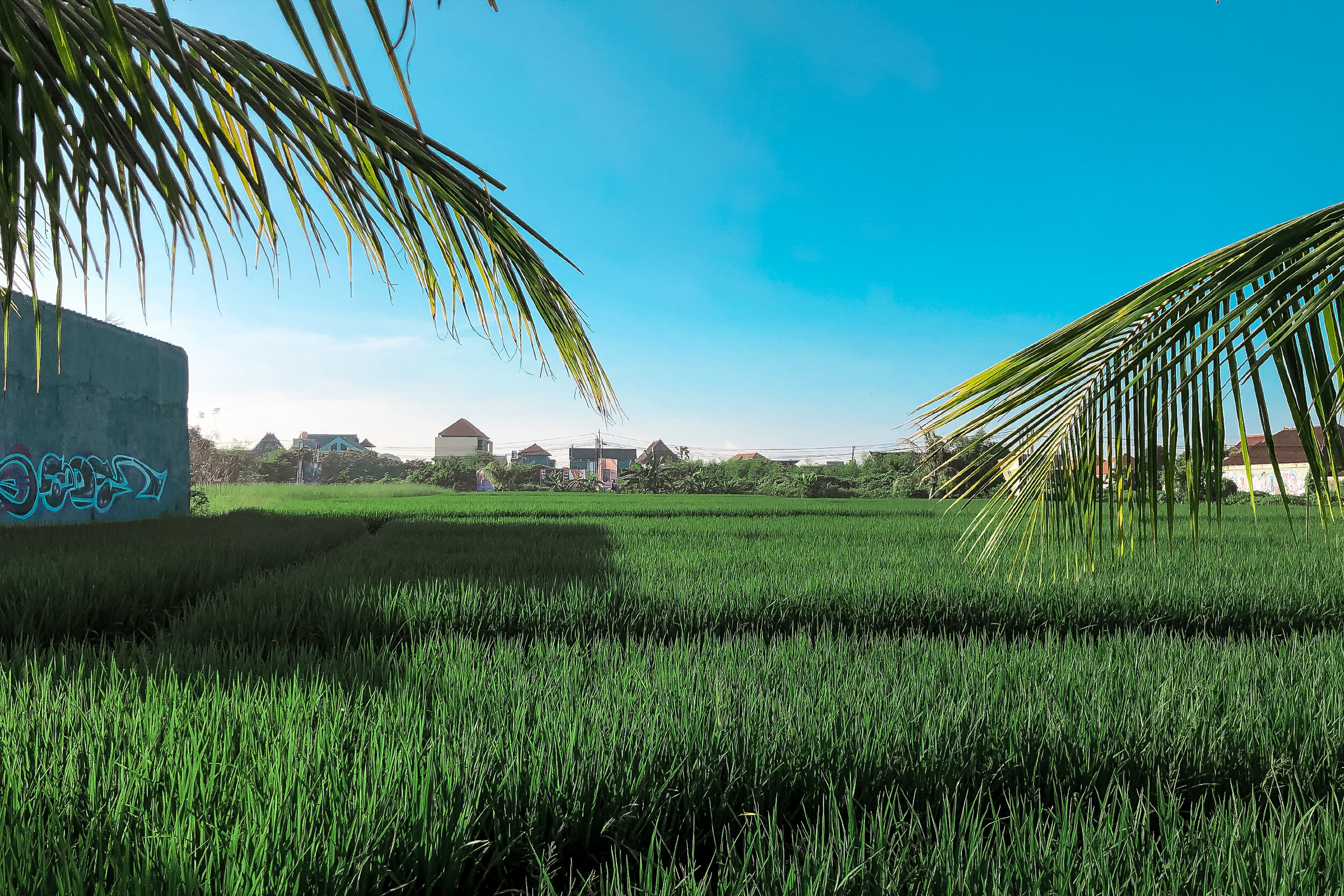
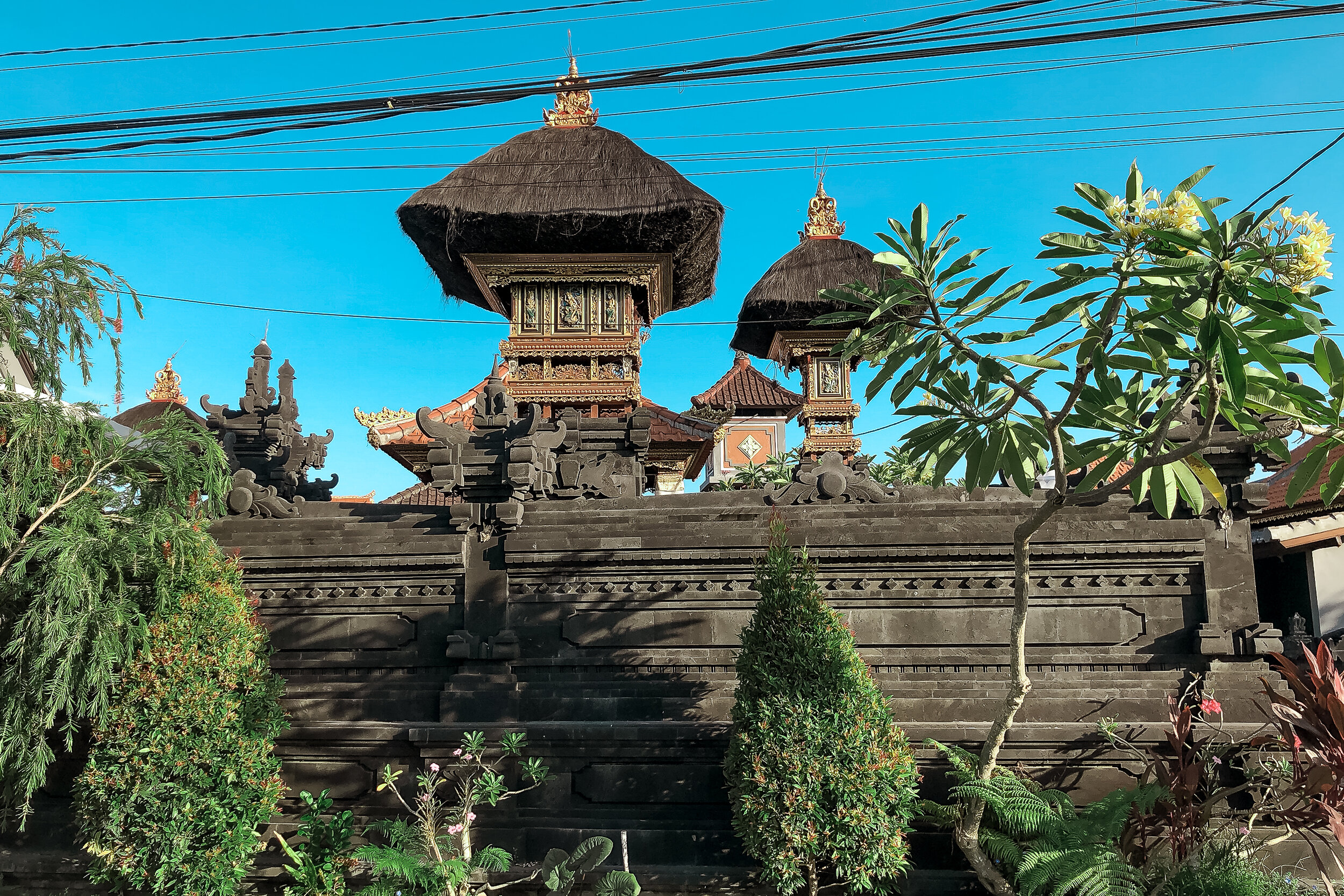
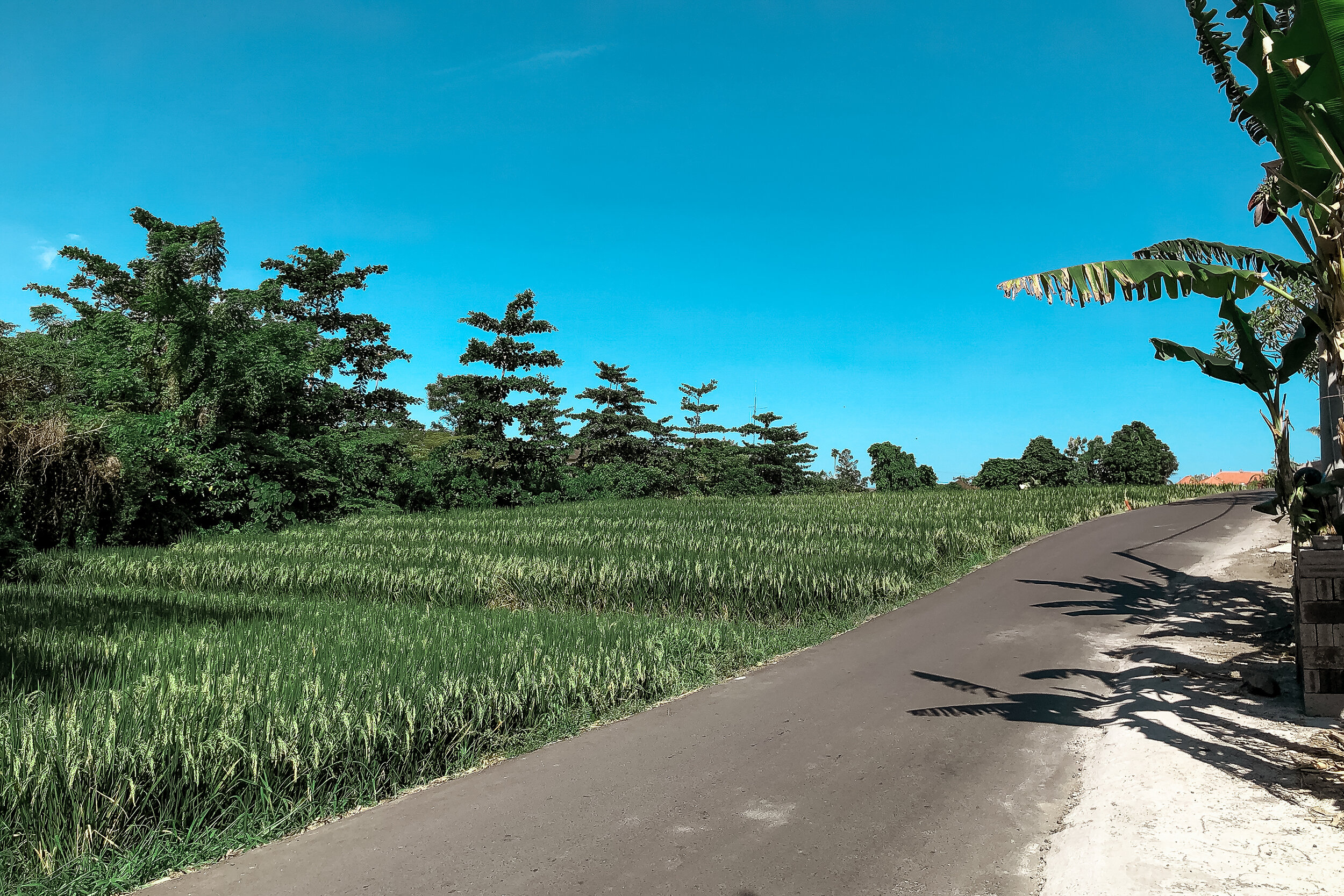
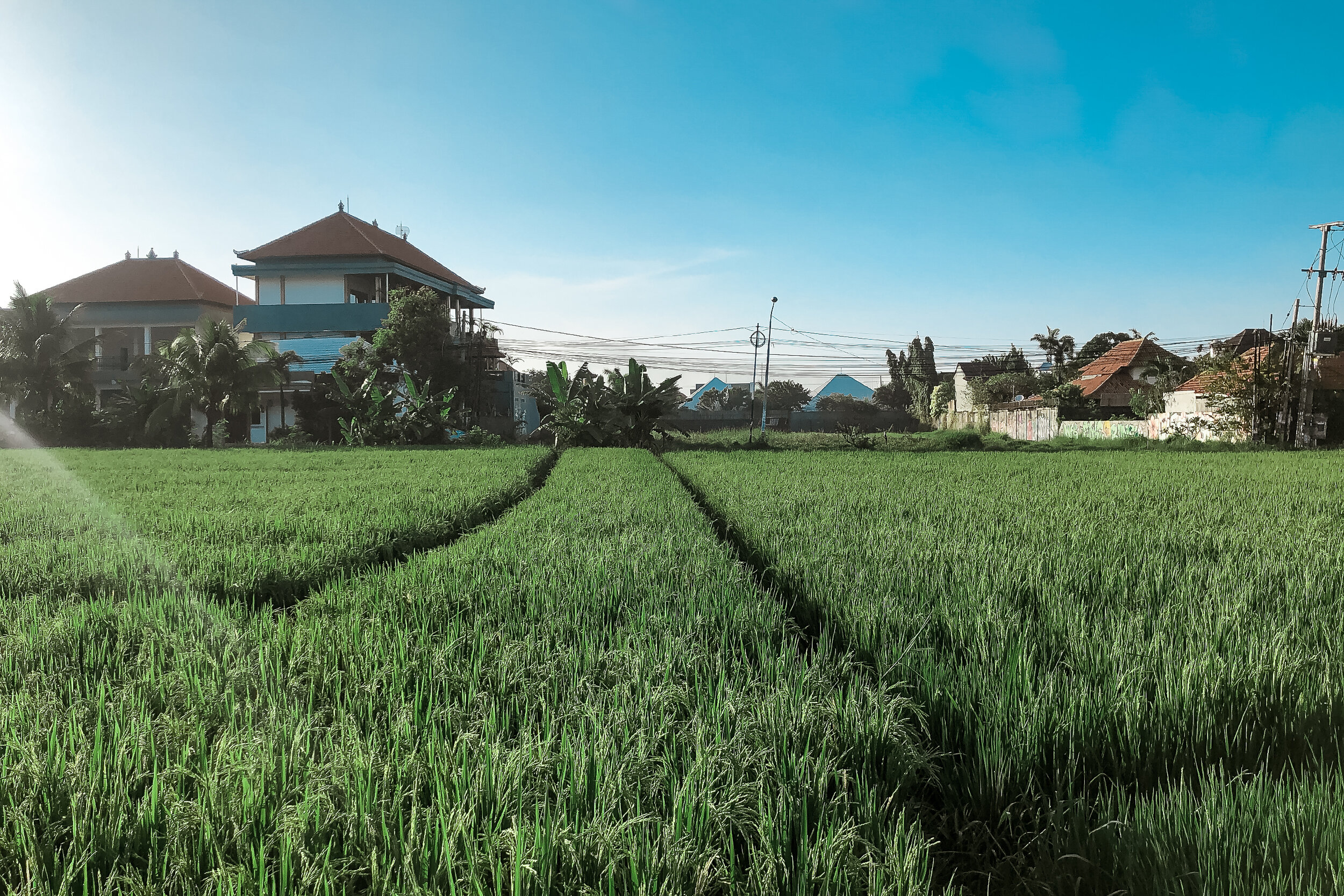
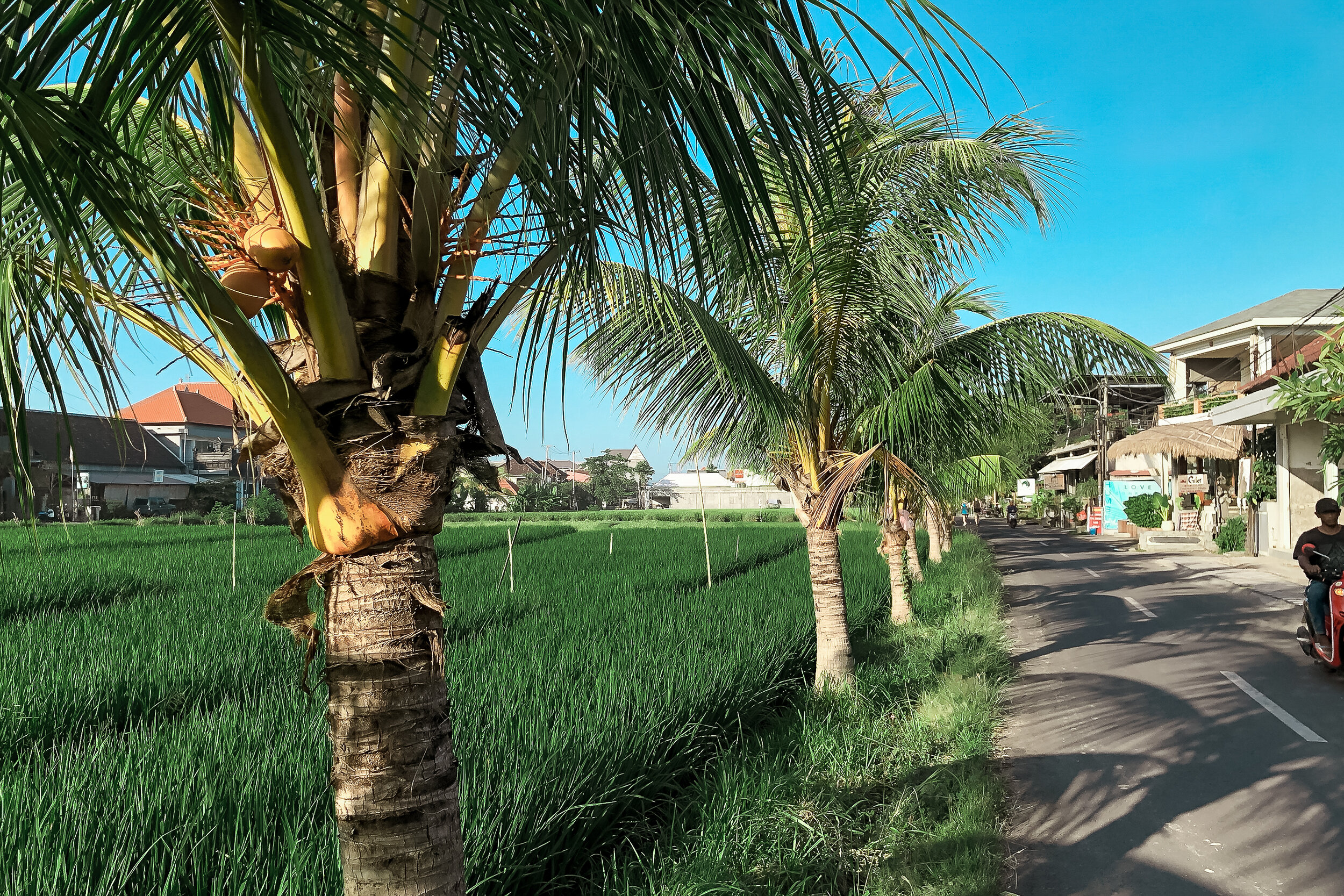
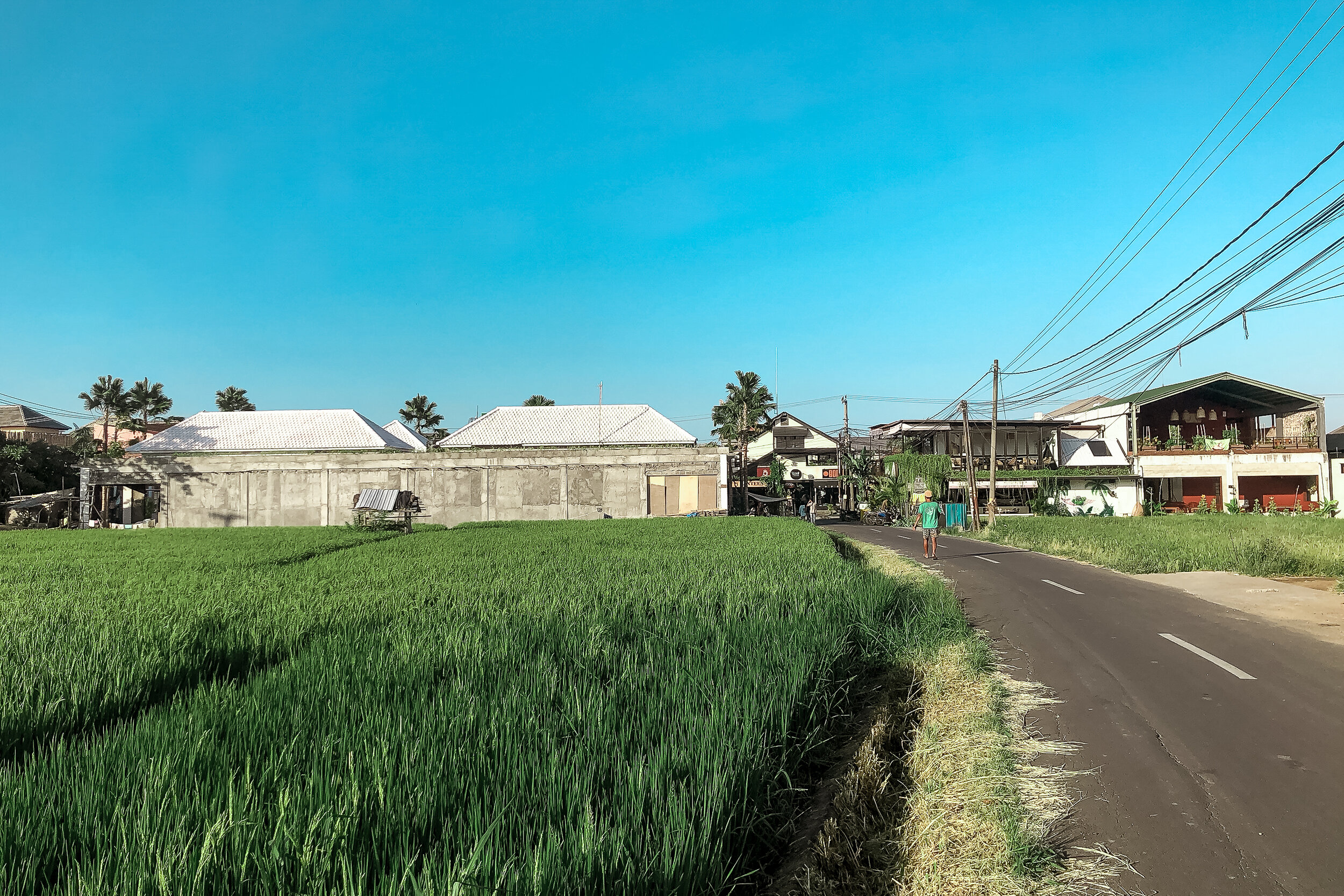
Getting Around
The fastest way to get around is by scooter but Canggu can easily be explored on foot.
Scooters range from 50-70K Rp per day (less than $5 USD) or 600K Rp per month ($43 USD)
For safety and to avoid a fine, always wear a helmet while riding a scooter
Carry a flashlight at night when walking along the roads. There are not many streetlights making it difficult to see and be seen.
Roads are often narrow and congested during rush hour.
Perpendicular from the shore are 3 main streets extending deep into Canggu. Also wander the side streets and pathways.
Beaches
Batu Bolong & Canggu Beaches. Easily the most popular and beautiful beaches in Canggu. There are plenty of restaurants, bars and beach clubs to find a lounge for the afternoon, watch the sunset, meet other travelers and enjoy the tropical vibes. Both beaches are known for their beginner and intermediate surf spots with many any beachfront businesses renting surf boards and offering lessons.
Echo Beach. Black sand beach with a seaside temple and a small cliff lined with cafes, barbecue restaurants and surf rentals.
Berawa Beach. A smaller and quieter beach away from the larger clubs with beach shacks, fisherman boats, rentable lounges and surf lessons.
Good to Know
Canggu, like many places in Bali have black sand due to the volcanic soil of the island.
The beaches are easily walkable with numerous surf snacks, beach clubs, restaurants and cafes to rent lounges, watch the sunset and enjoy a meal.
There are friendly stray dogs roaming around the island, you’ll often encounter several playing and looking for food along the beaches.
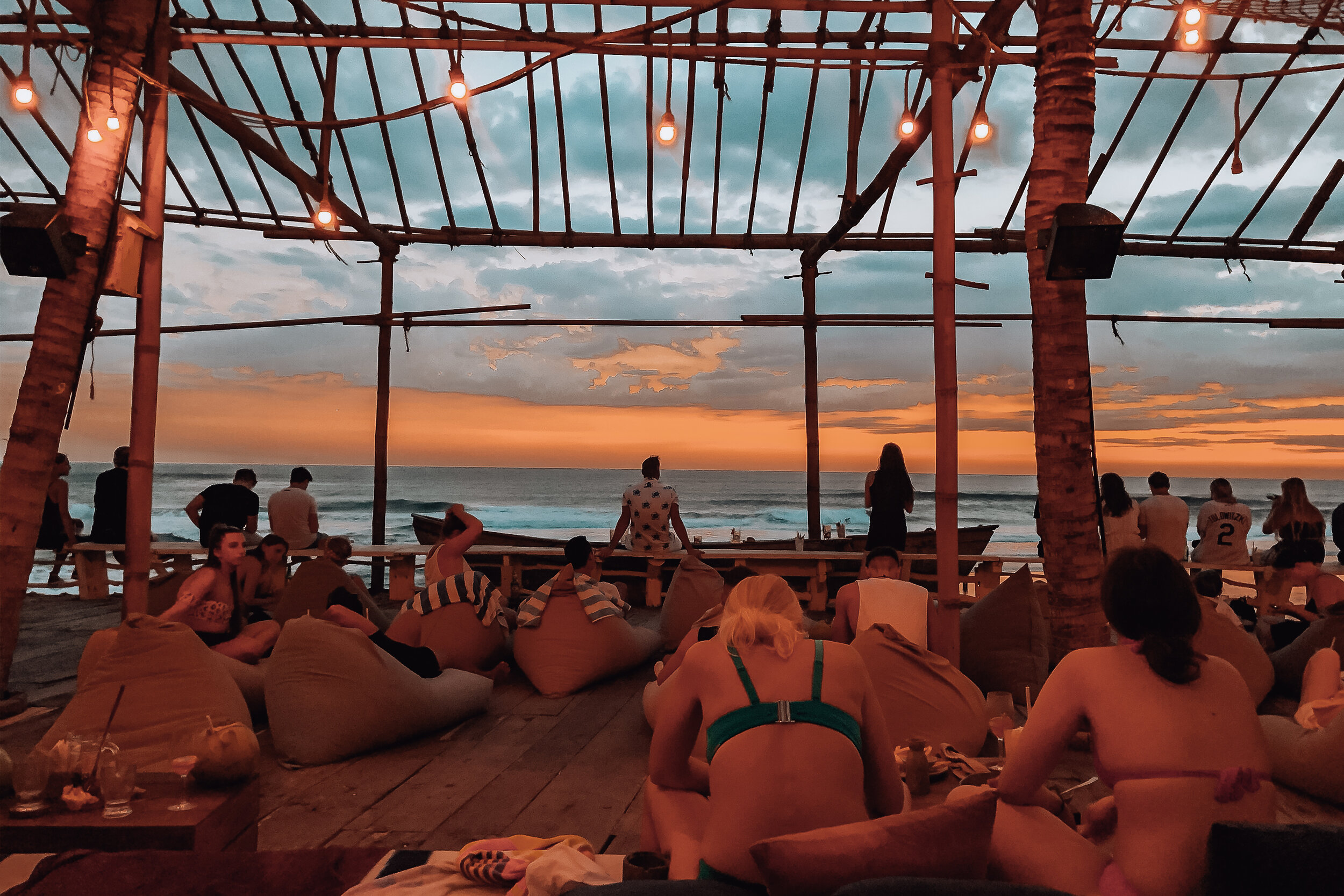
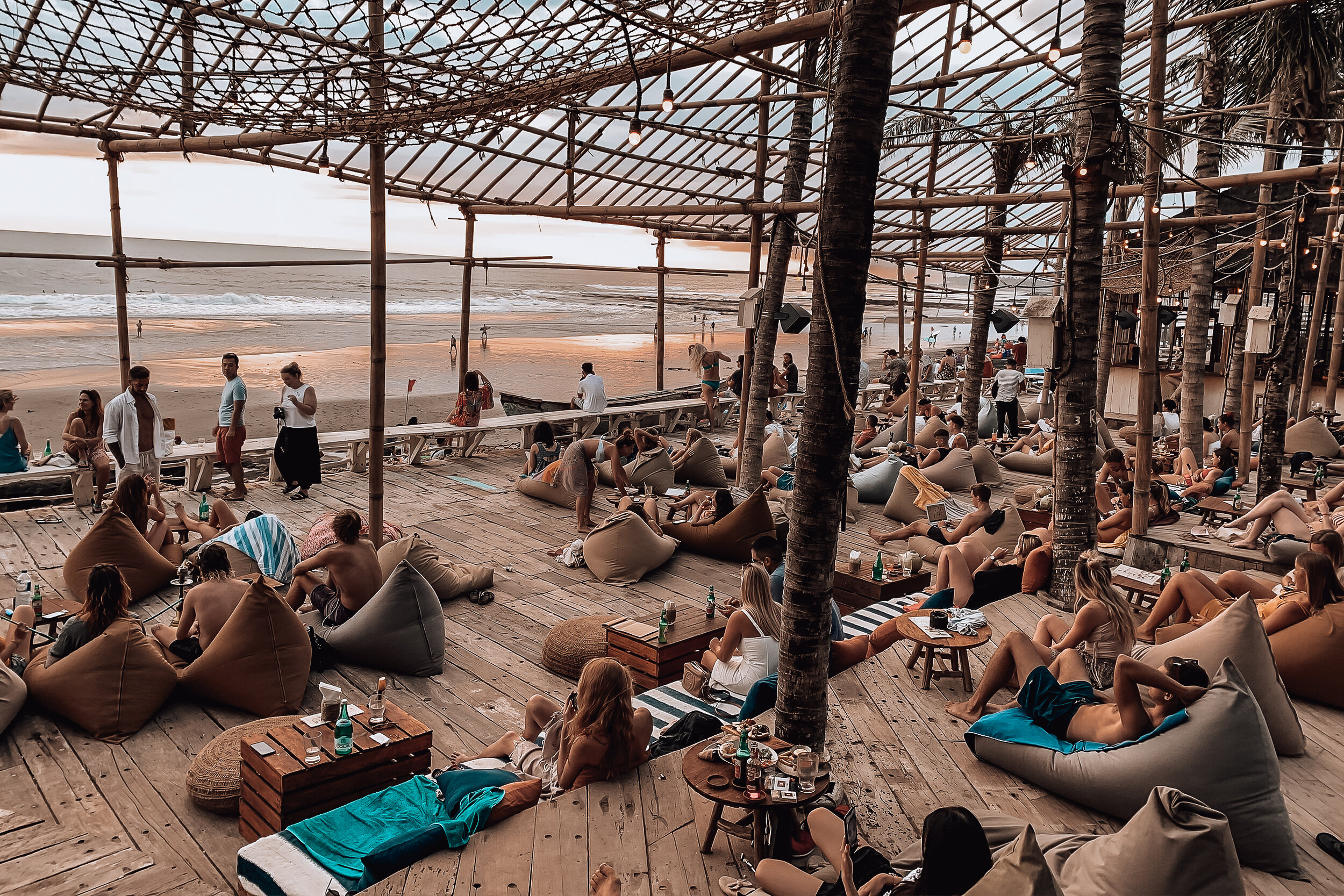
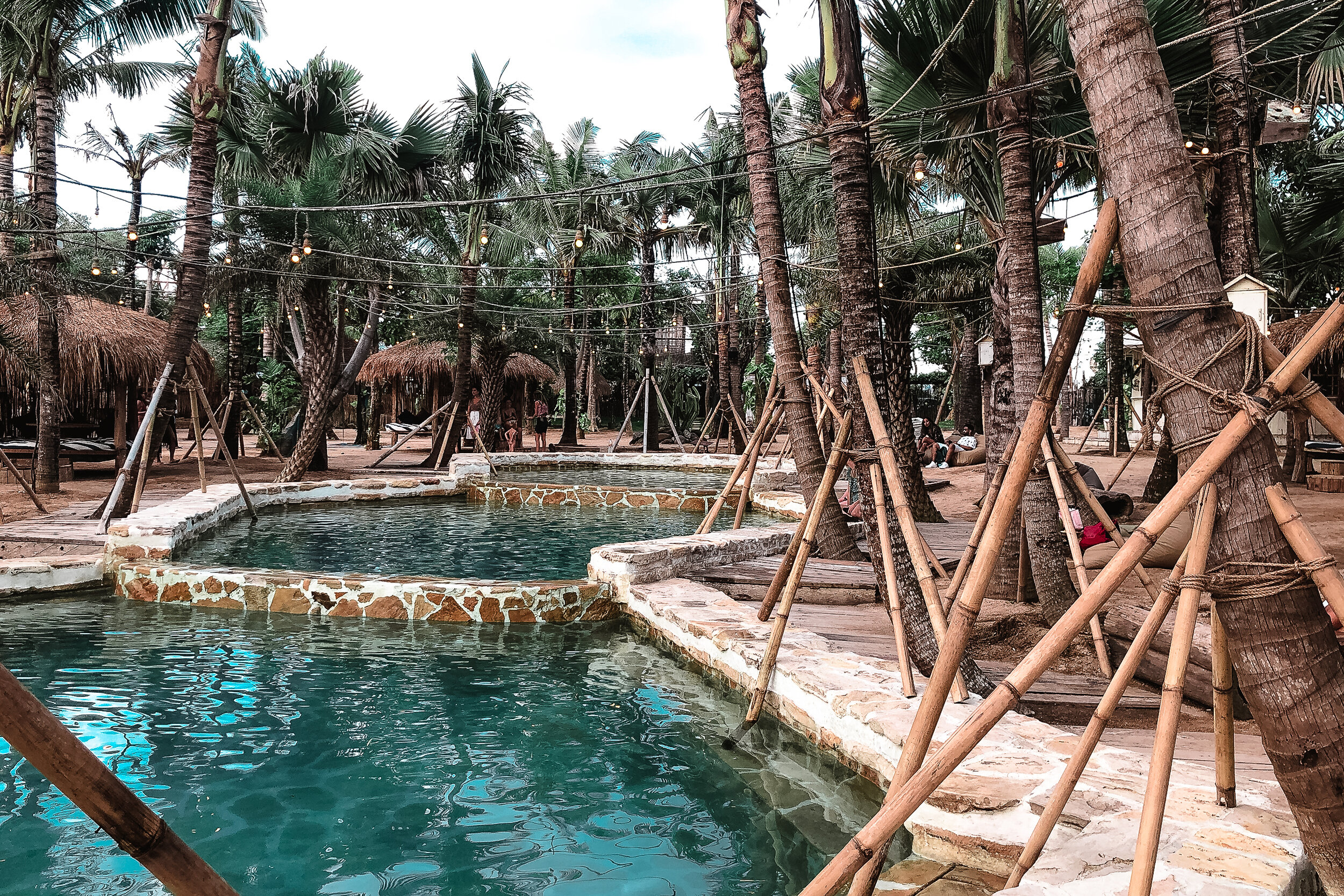
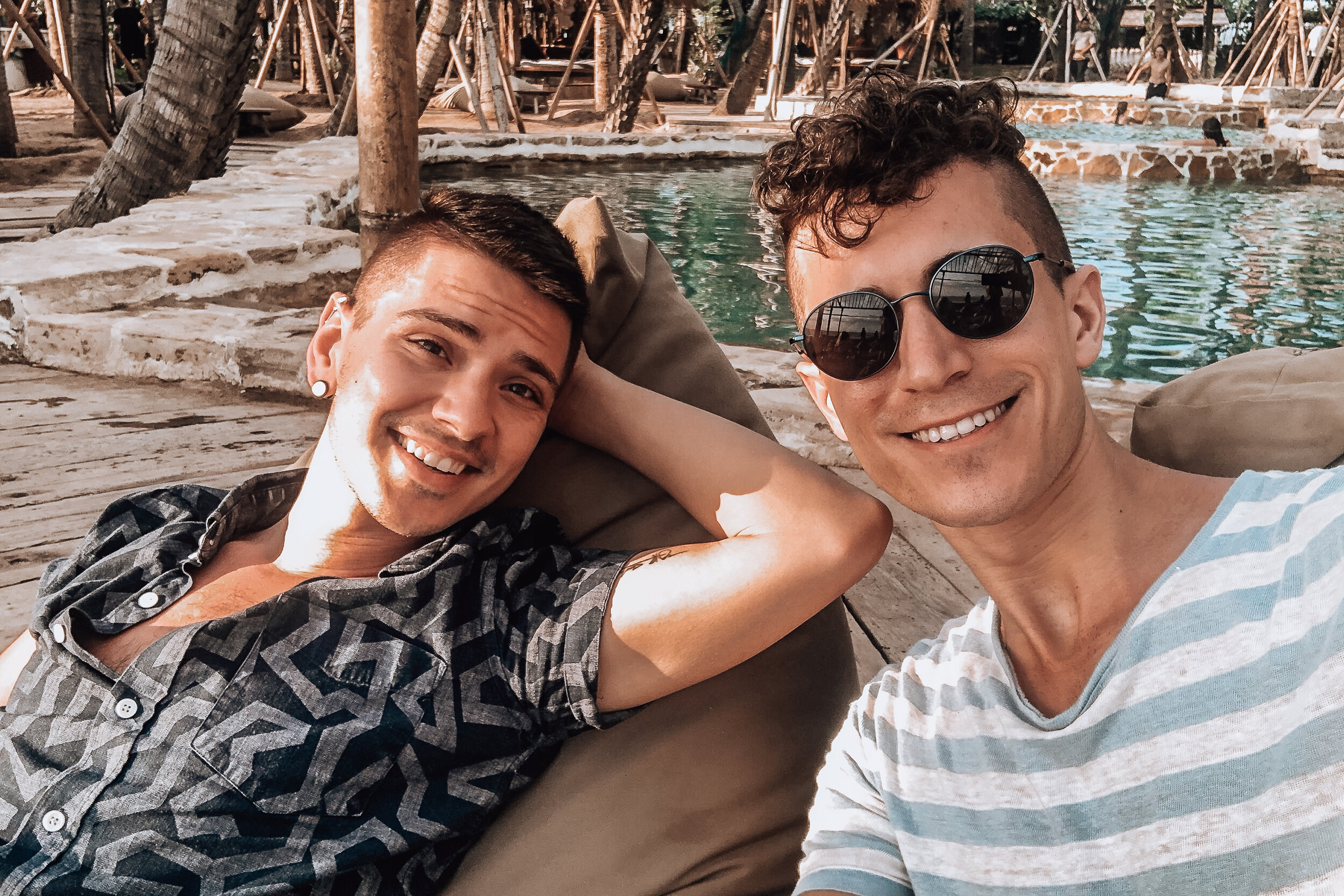
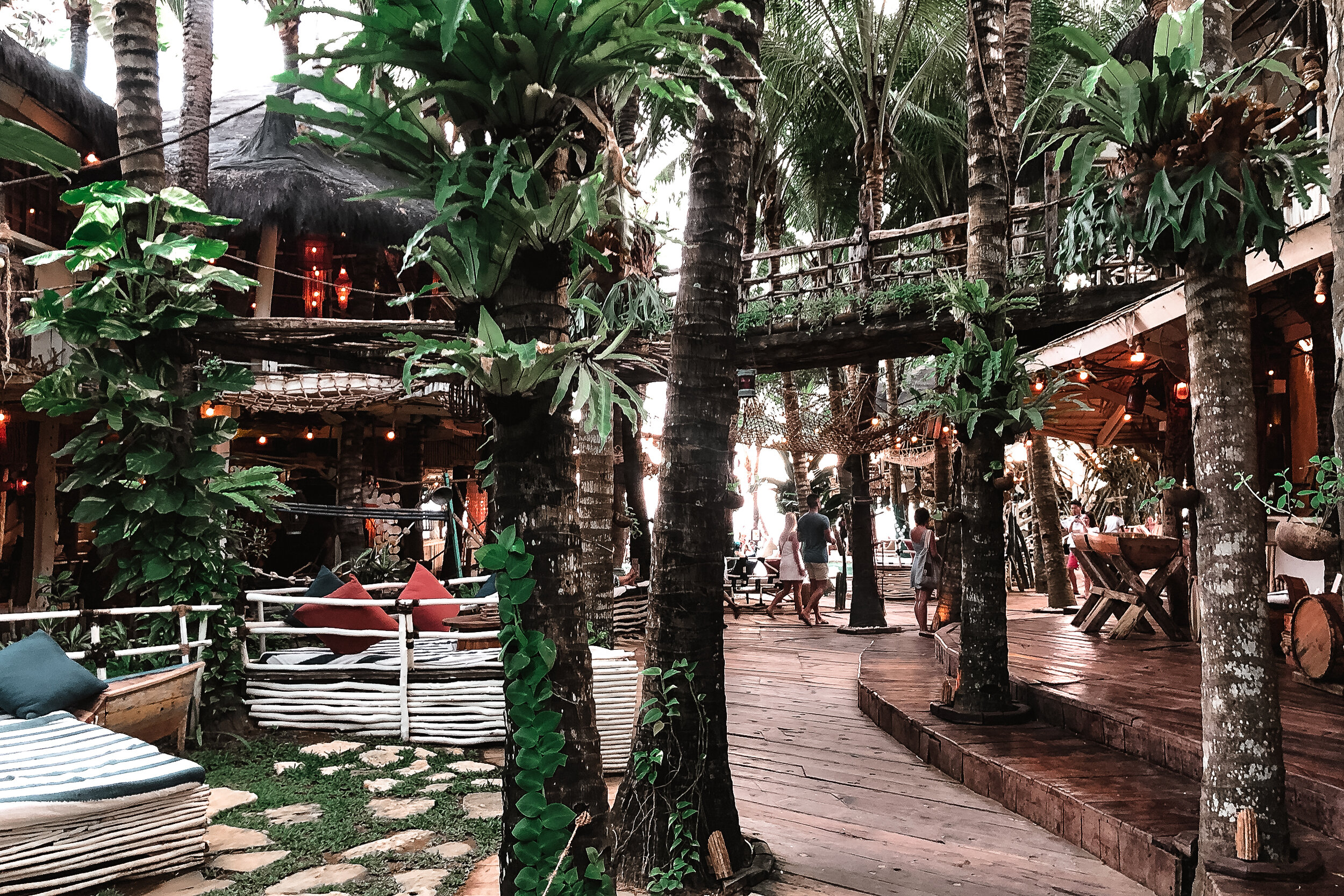
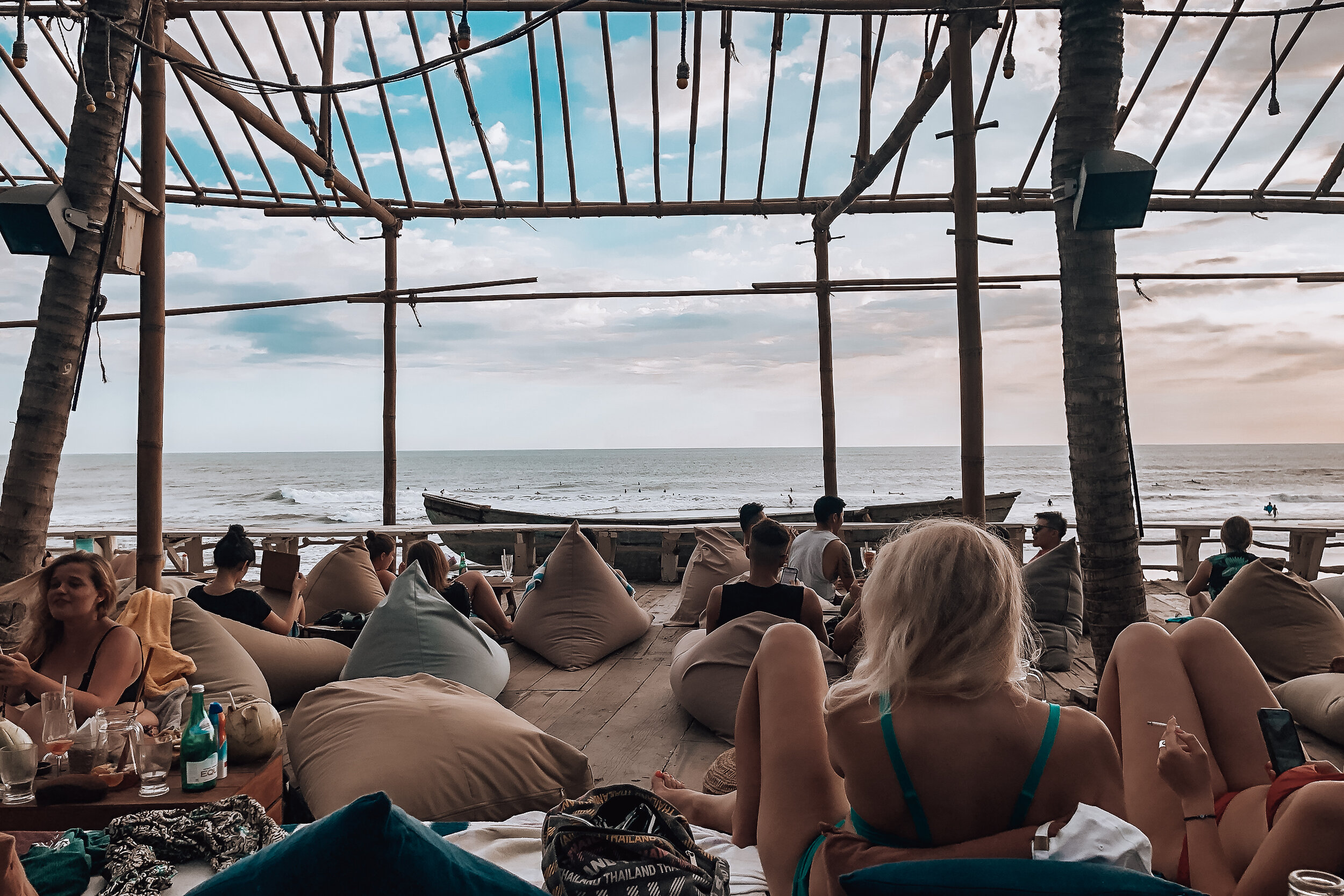
Beach Clubs
Beach clubs are a very popular way to enjoy the Balinese beaches. They can range from small oceanfront shacks offering lounges and drinks to large open air buildings with infinity pools, live music and several bars. They make for a great place to relax during the afternoon heat, enjoy the sunset or party at night.
La Brisa. A beachside, mostly outdoor and open air restaurant that felt like walking through a tropical treehouse. The food and drinks here are delicious and the vibe was relaxing even during the busier hour of service. Like many places in Canggu, the sunset here was spectacular.
The Lawn. A casual beachside restaurant known for its faux lawn, infinity pool, cocktails and food.
Finn’s Beachclub. A large, high-end and popular beach club recognized by it’s giant bamboo and thatched building. Finn’s is home to several pools, restaurants and bars often playing live music. You pay 750K+ Rp ($53USD) to enter which reserves your lounge or table and can be redeemed for food and drinks.
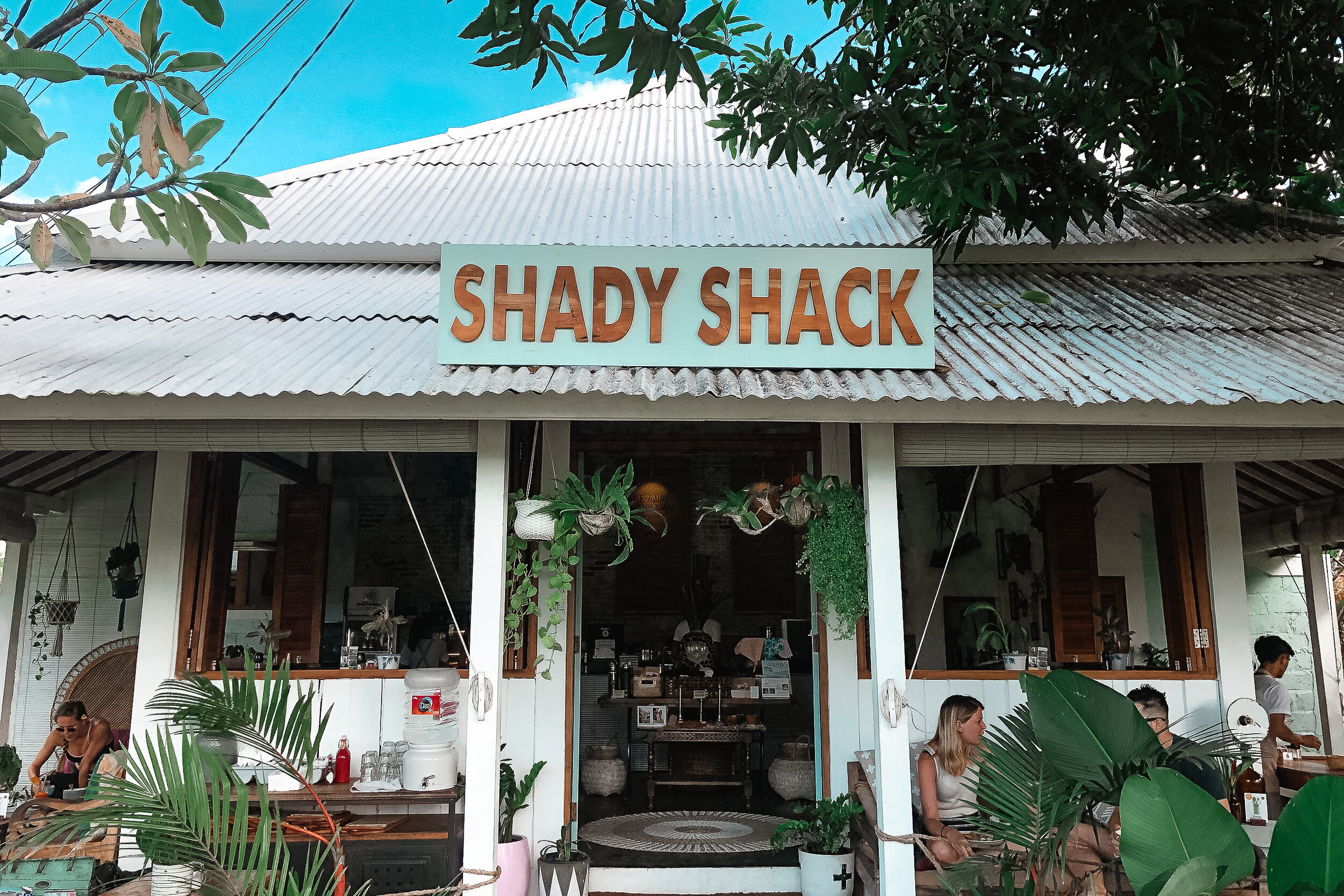
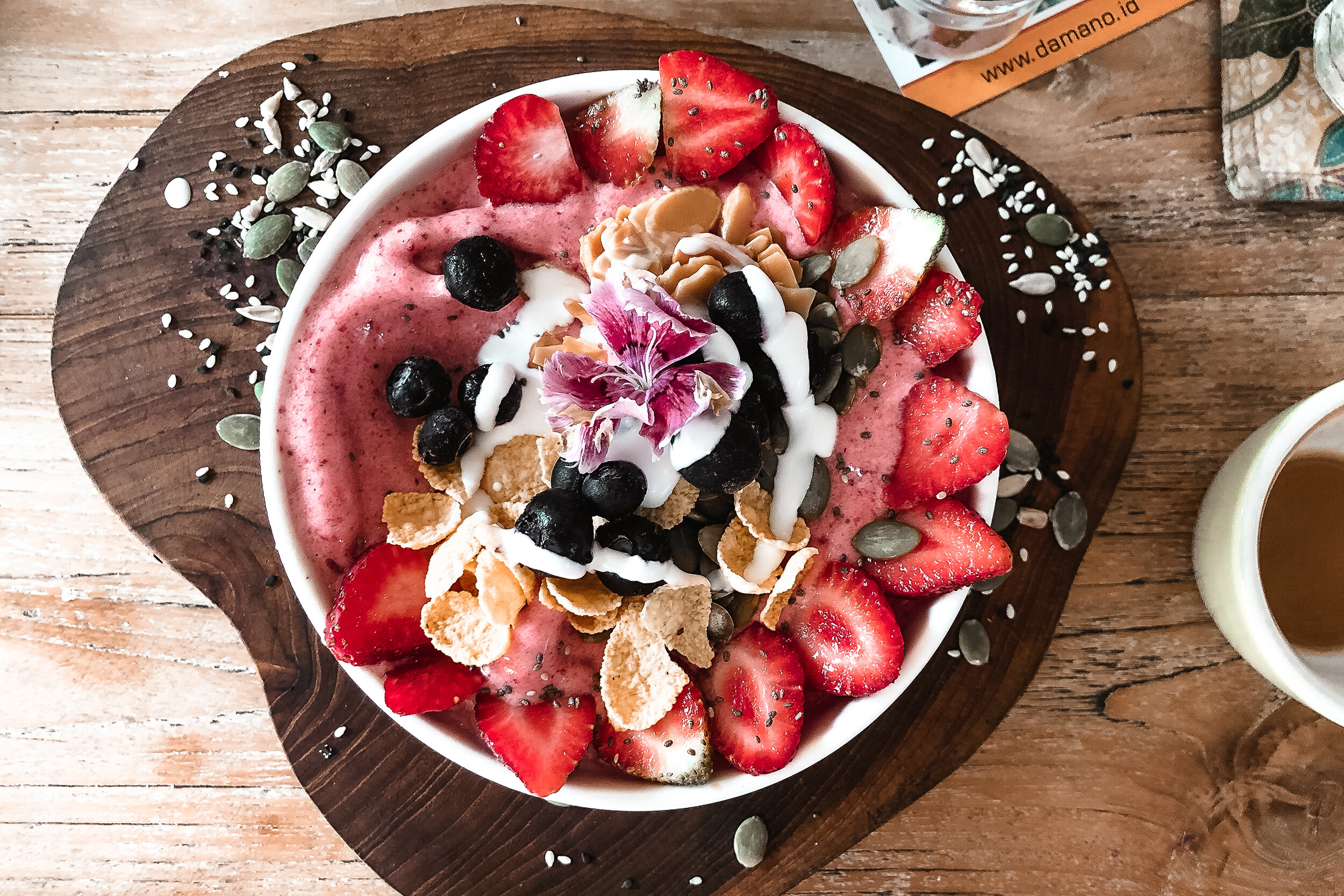
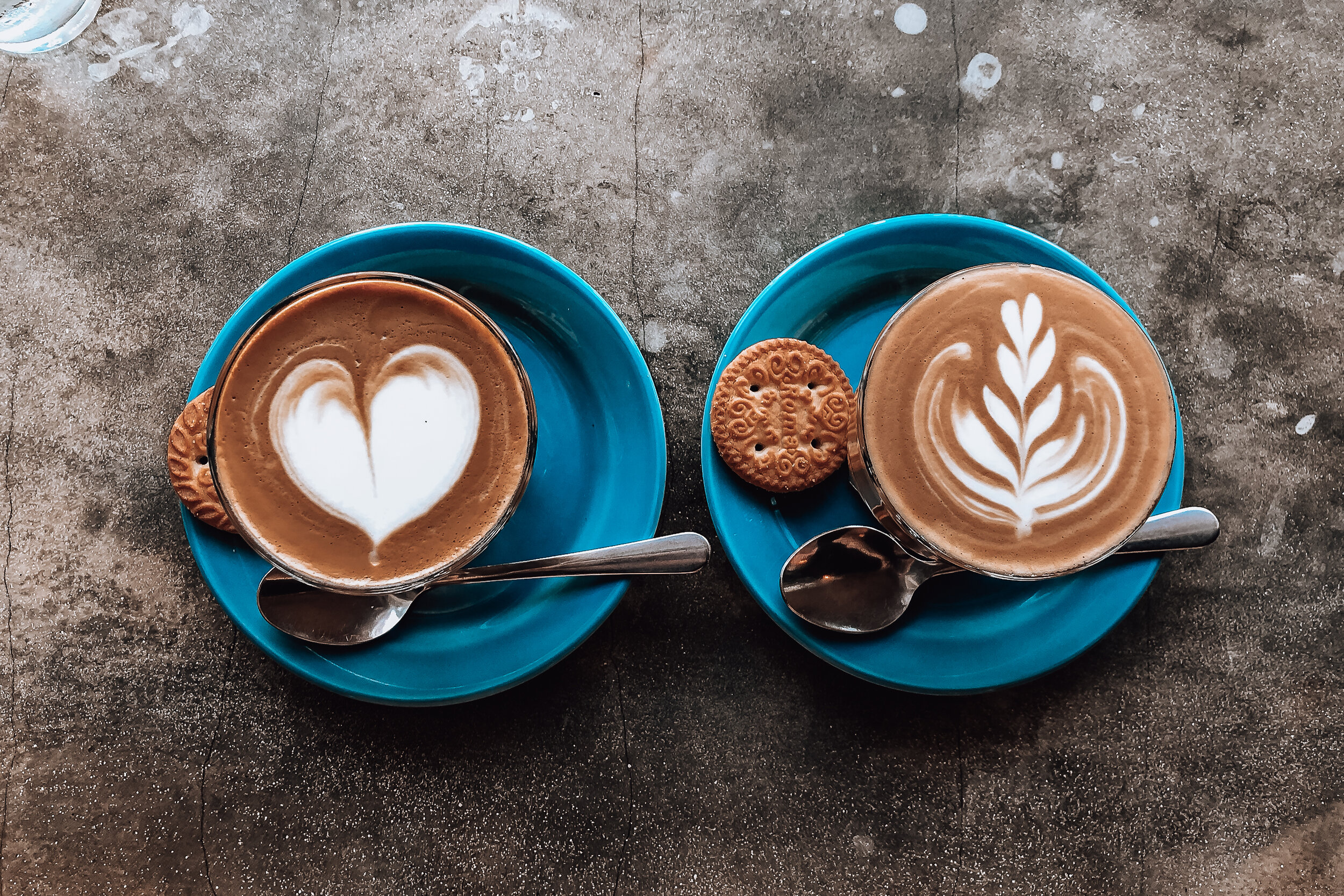
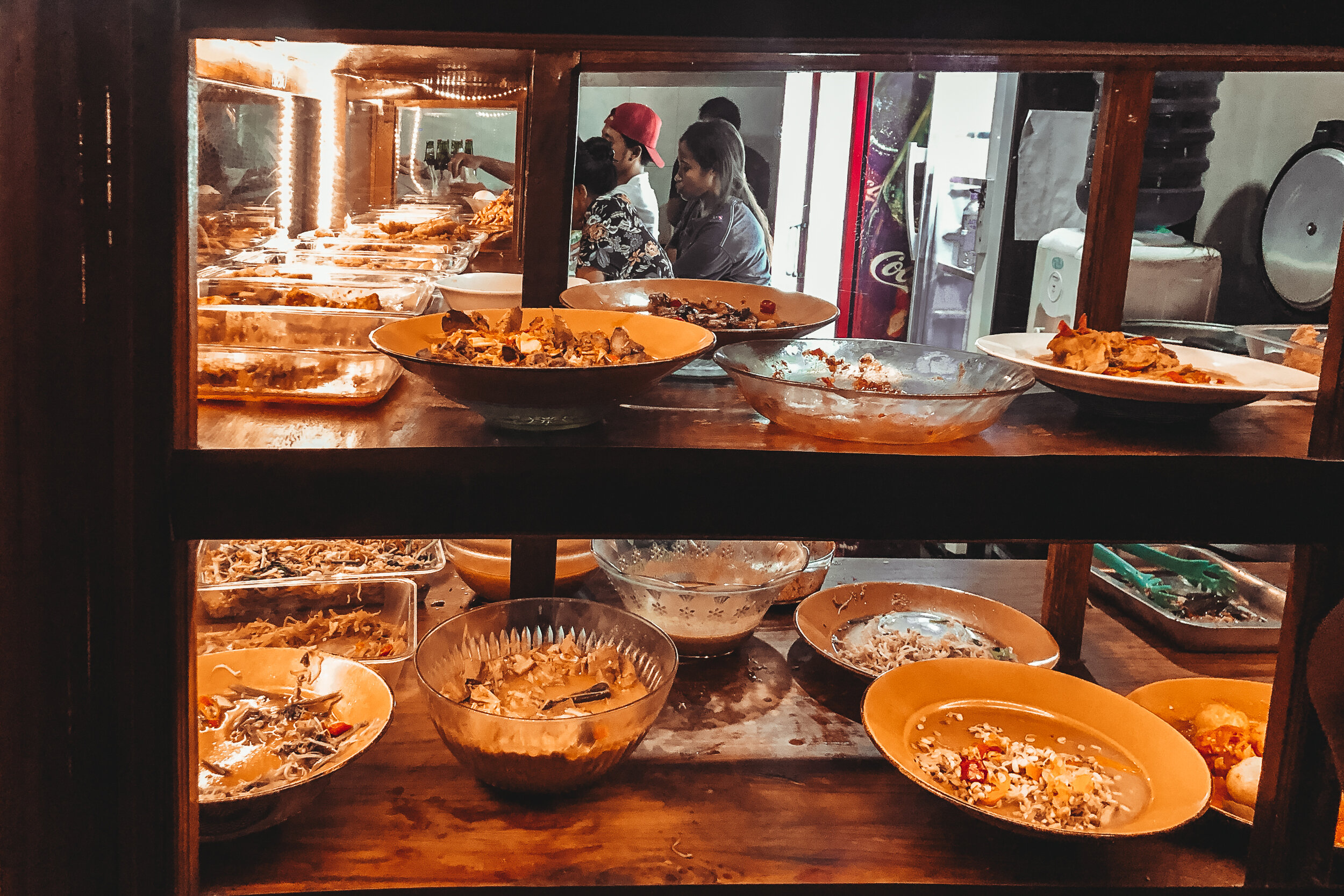
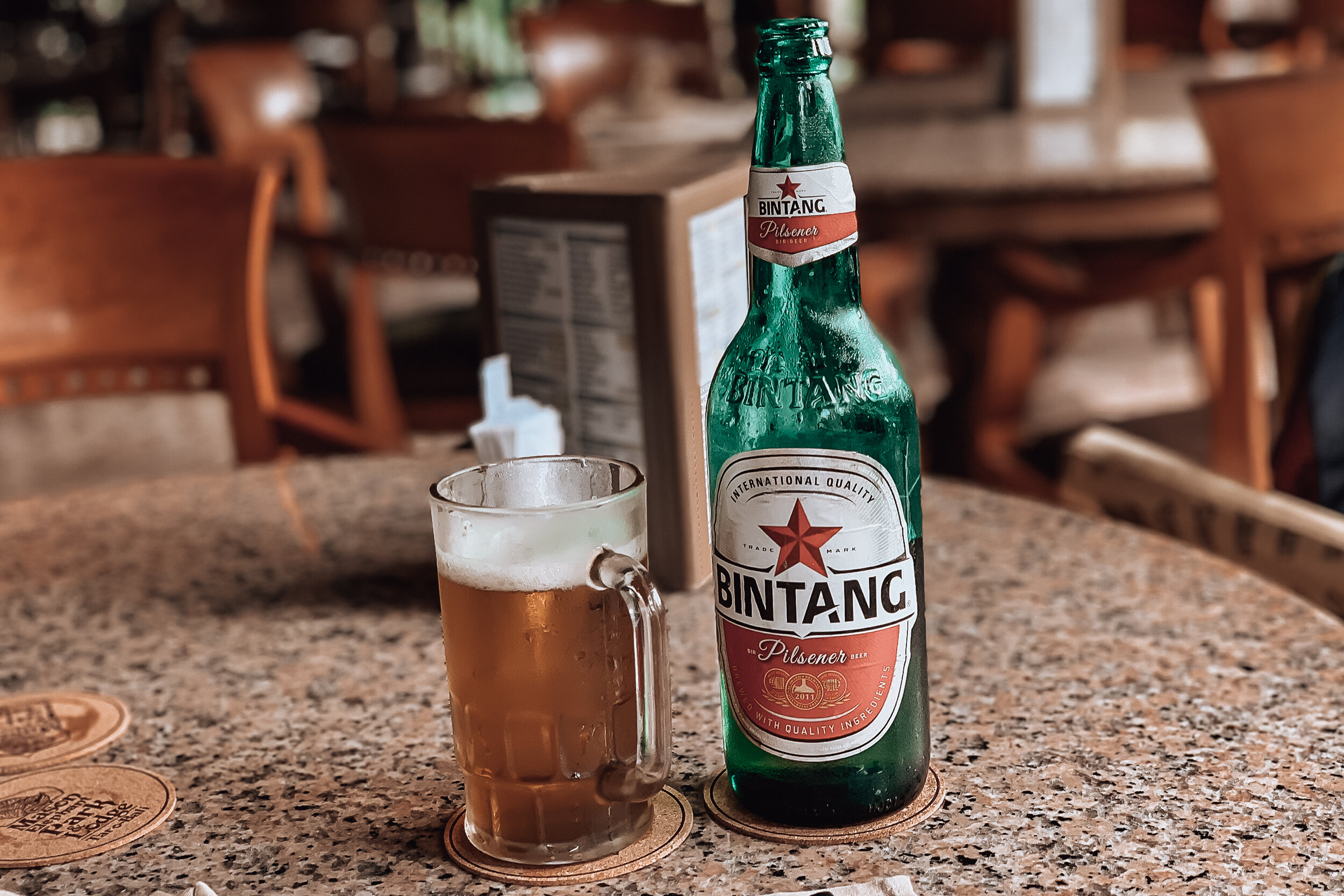
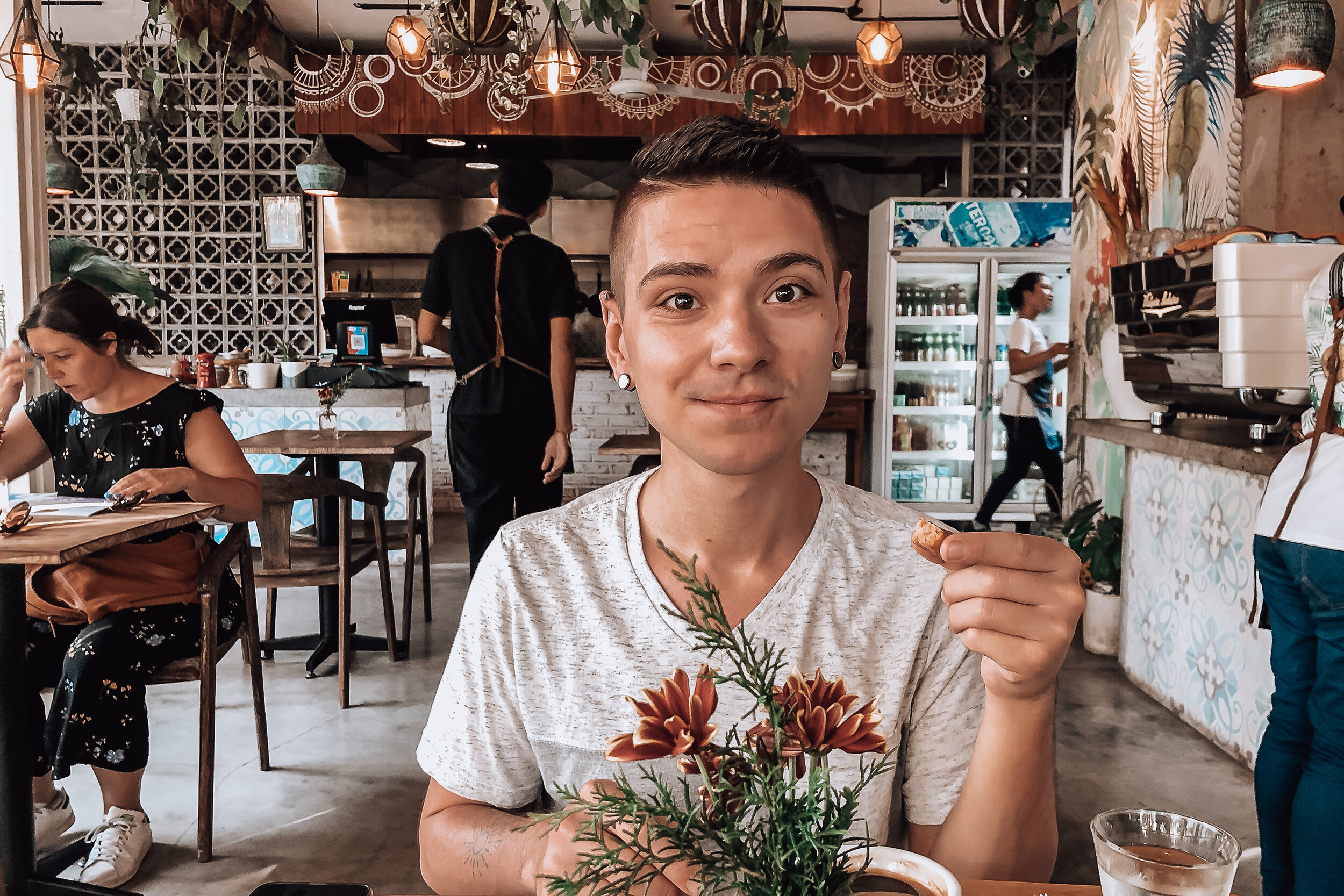
Food, Restaurants & Cafes
Canggu is known for its food scene. There are endless options to try traditional Balinese food, locally grown fruits, vegan meals and Australian inspired “brekkie.”
Warungs are restaurants serving a buffet of dishes and plates of fresh made, inexpensive and traditional Balinese cuisine.
Bali Bowls or smoothie bowls are mixtures of puréed frozen fruits often decorated in fresh fruit, grains and flowers. They’re a healthy, filling and refreshing way to start the day. Almost every cafe offers their own versions.
Bintang is Bali’s regional beer. It’s very light and sold almost everywhere for 15K Rp or $1.
Shady Shack. Located across from a rice field in an outdoor patio covered in tropical trees and plants. The menu is full of all kinds of colorful and creative vegan dishes. This is the perfect spot to come for Bali bowls and to drink kombucha through a papaya stem straw.
Gypsy Kitchen. A great restaurant at any time of day but especially during breakfast for their delicious egg dishes and flavorful coffee.
Mocca. An open air cafe with Bali bowls, fresh coconuts, and vegan dishes made with jackfruit and tempe.
Temples & Offerings
The Balinese are very spiritual people, mostly practicing Hinduism. Their temples are easily recognized across the island and important places for families to gather.
The Balinese leave daily offerings in front of their homes and business. These offerings are usually small, leaf woven baskets containing flowers, burning incense, cookies, candies and money. Out of respect, make sure not to step on them.
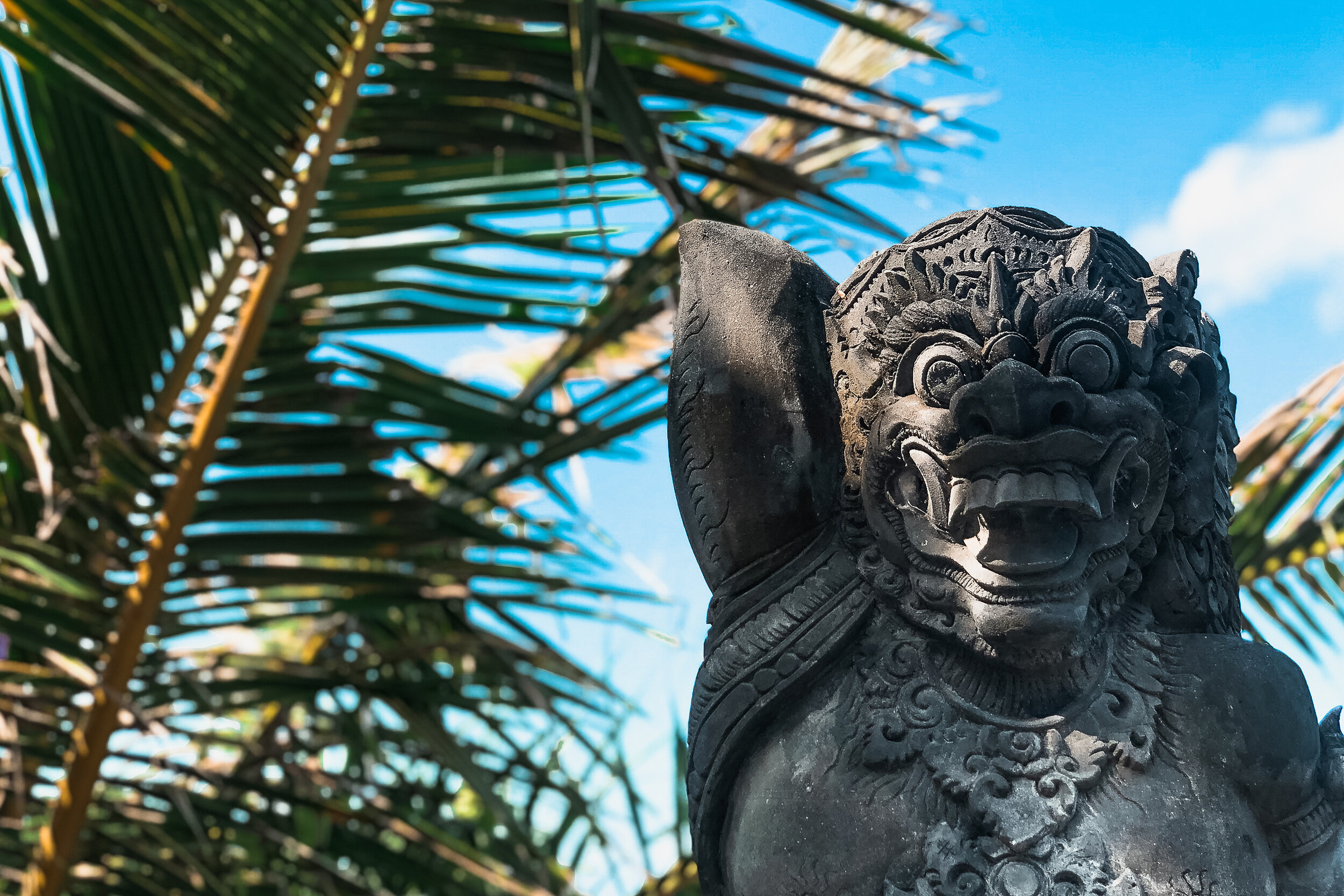
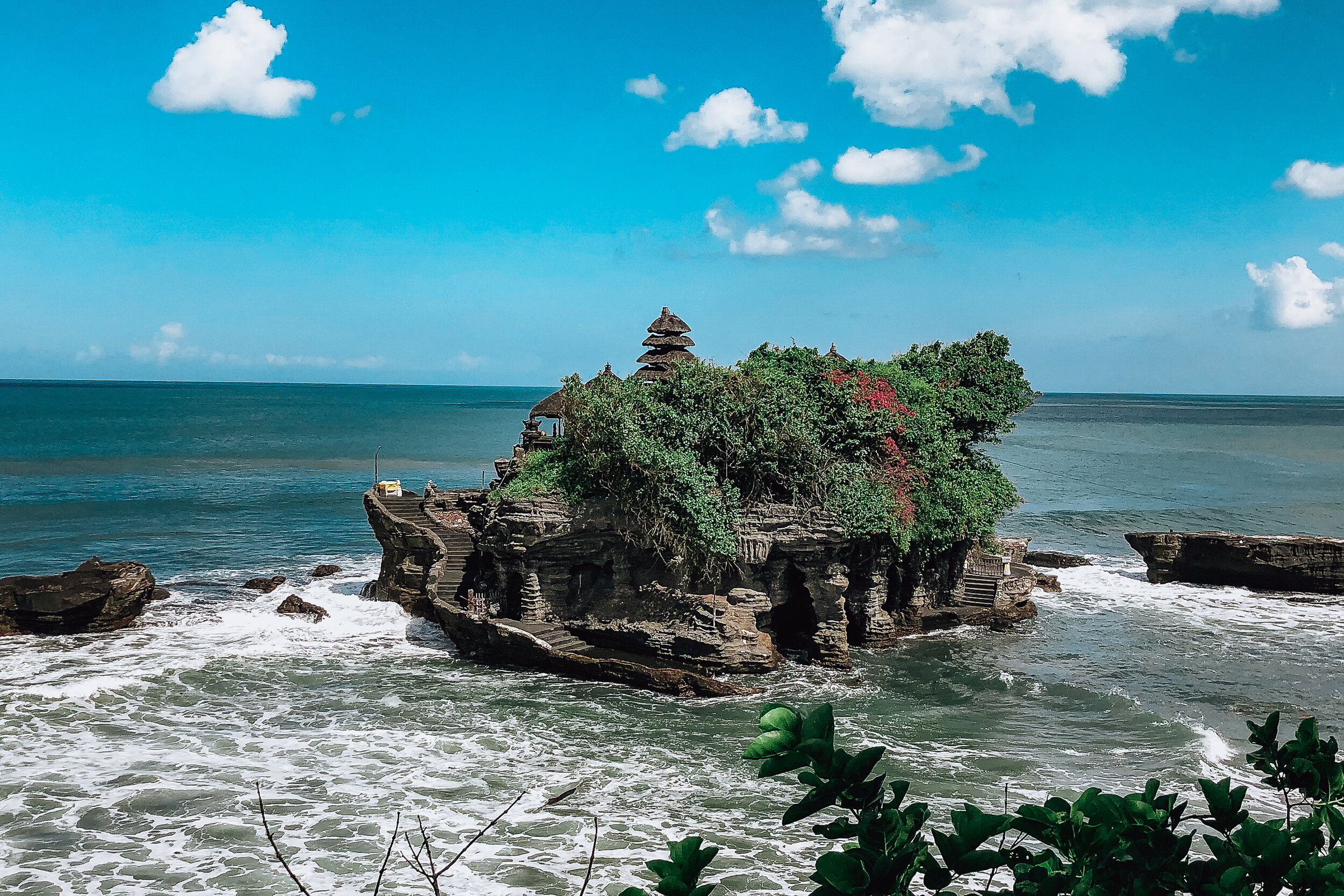
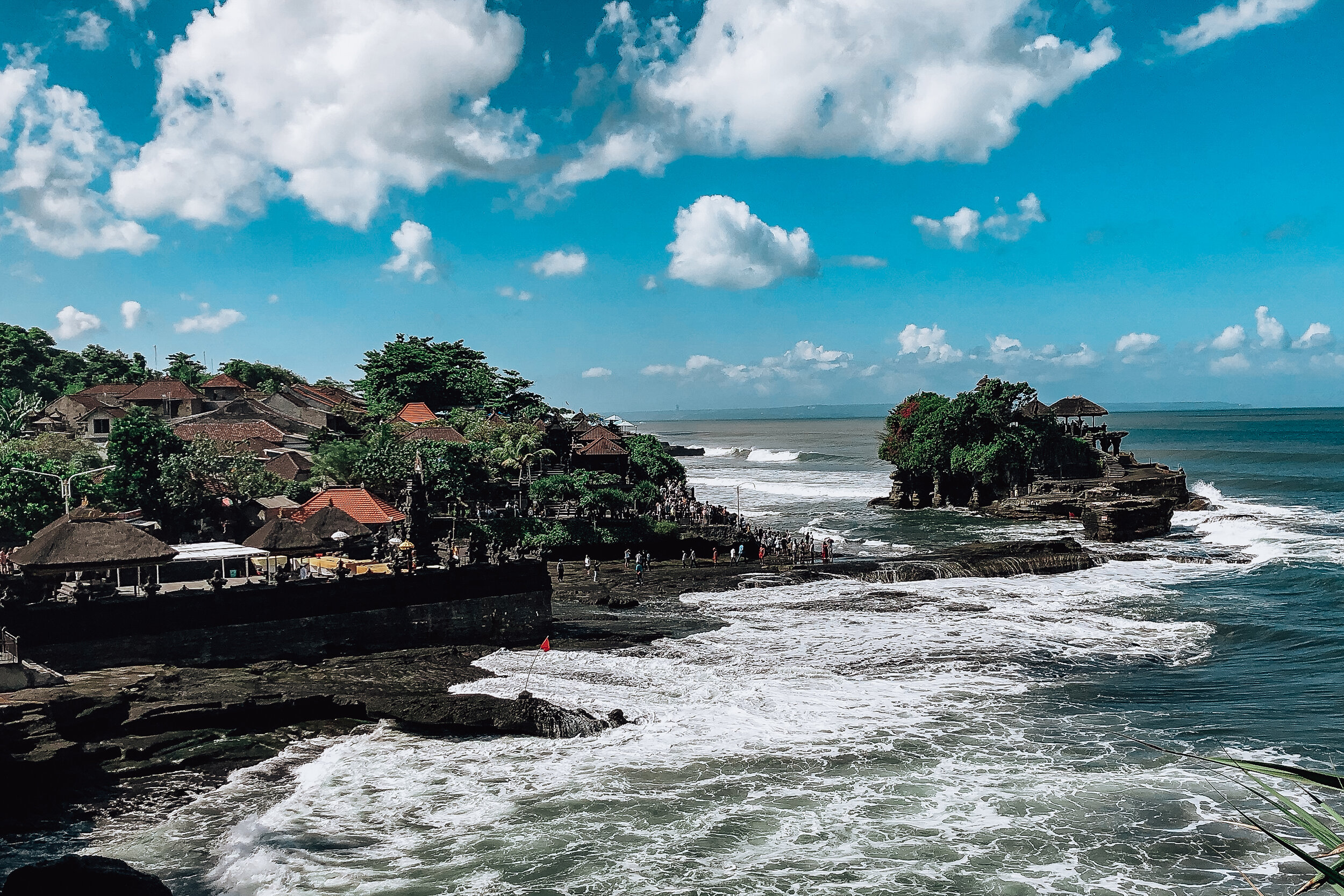
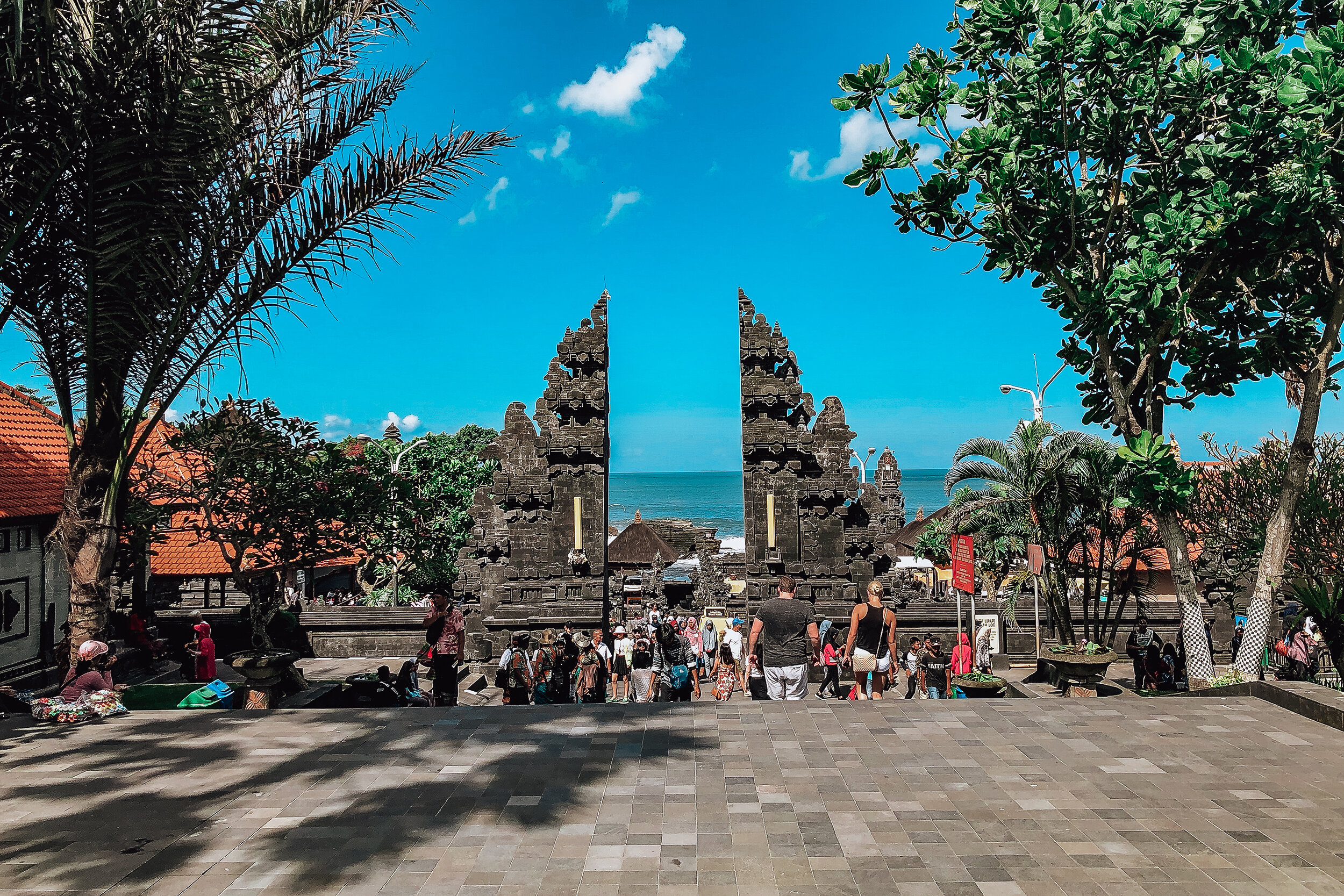
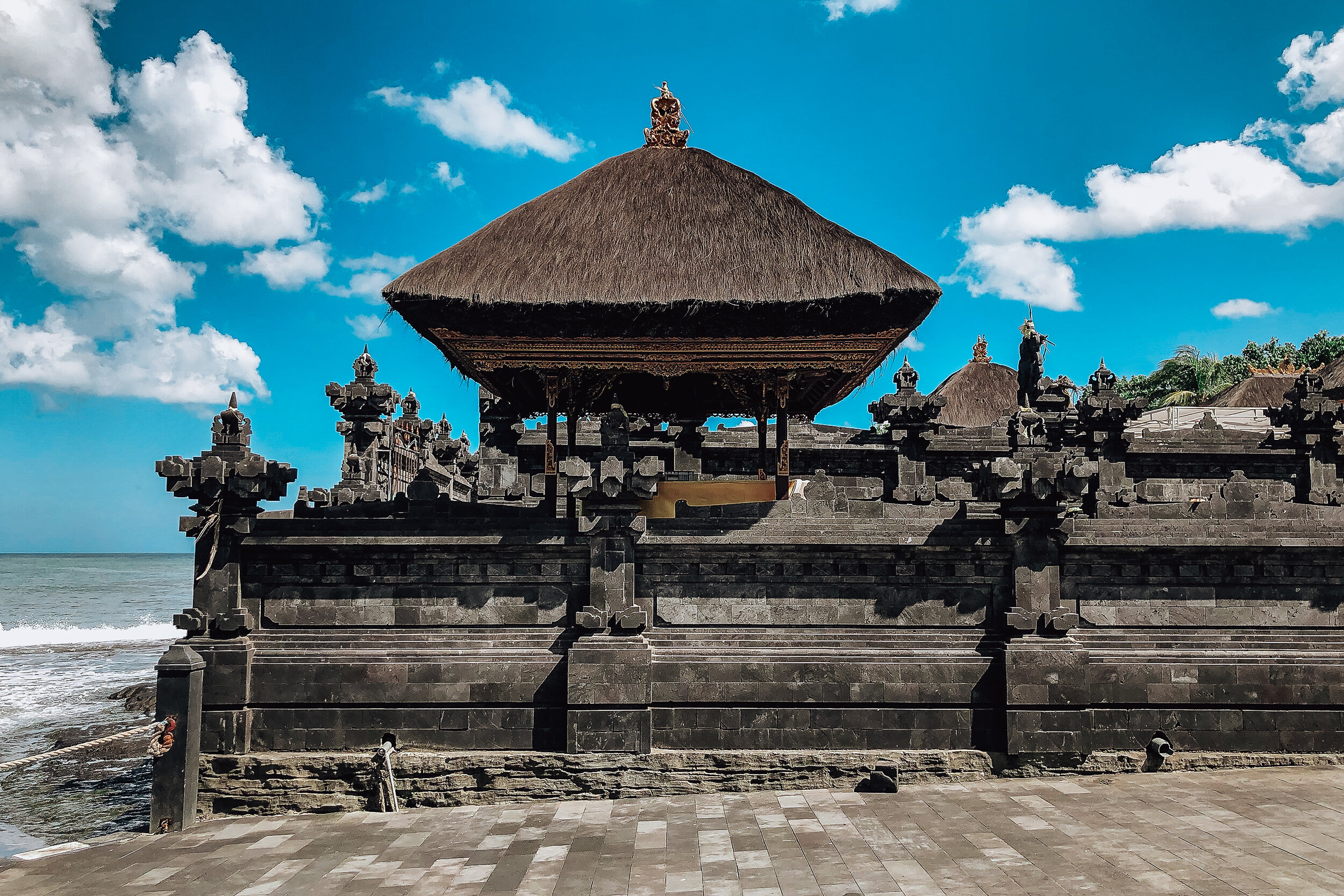
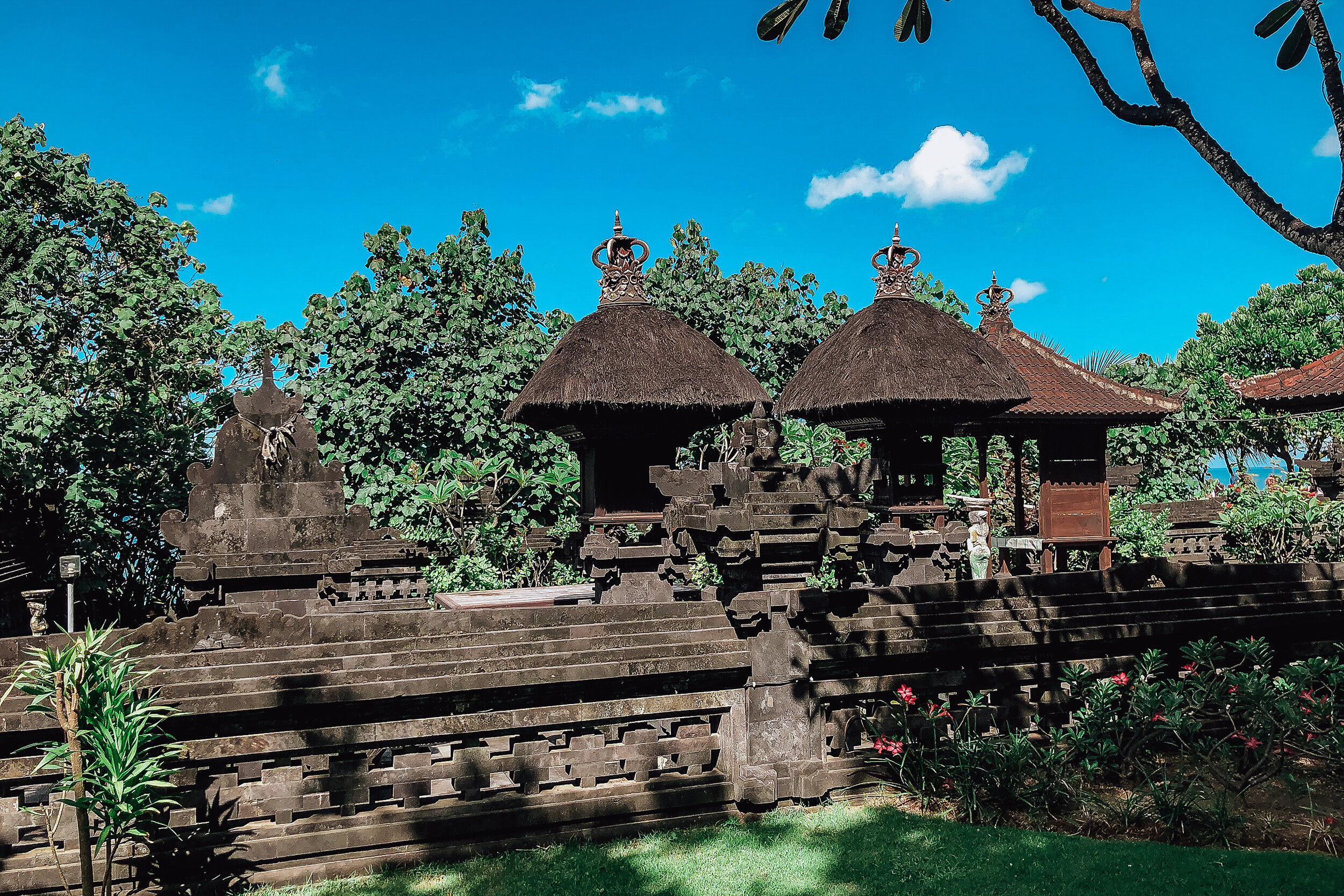
Tanah Lot Temple
A short taxi ride from Canggu is Tanah Lot Temple. It holds a special importance to the Balinese as its 1 of 7 ocean temples built to protect Bali from evil sea spirits. The temple is perched on a rock formation only accessible during low tide. Non-Balinese are not allowed to enter but can view from the nearby cliffs and outcrops below. Nearby is are temple gates and a number of food stalls to buy young coconuts and klepon, a green rice ball with palm sugar inside and a coconut shaved exterior.
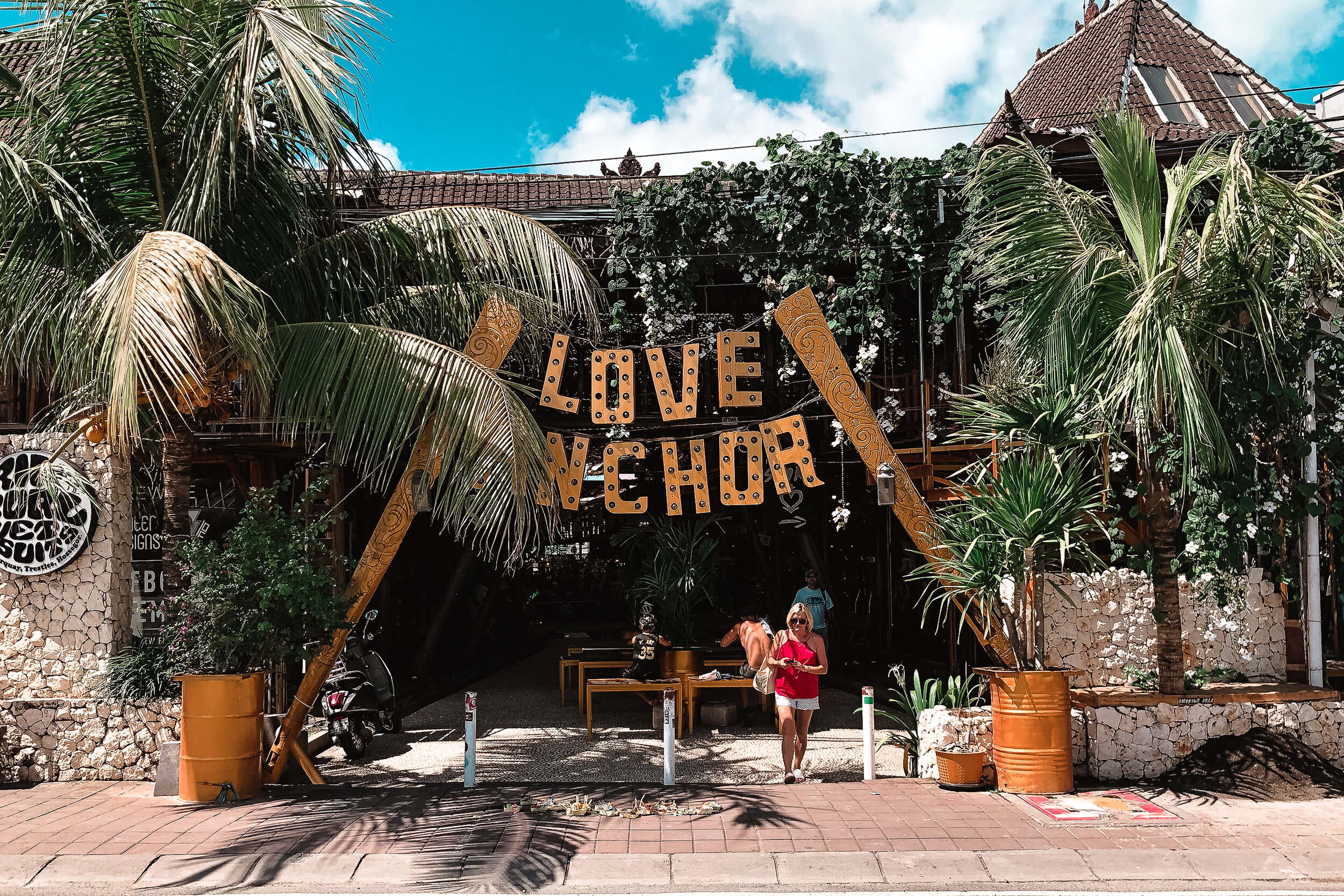
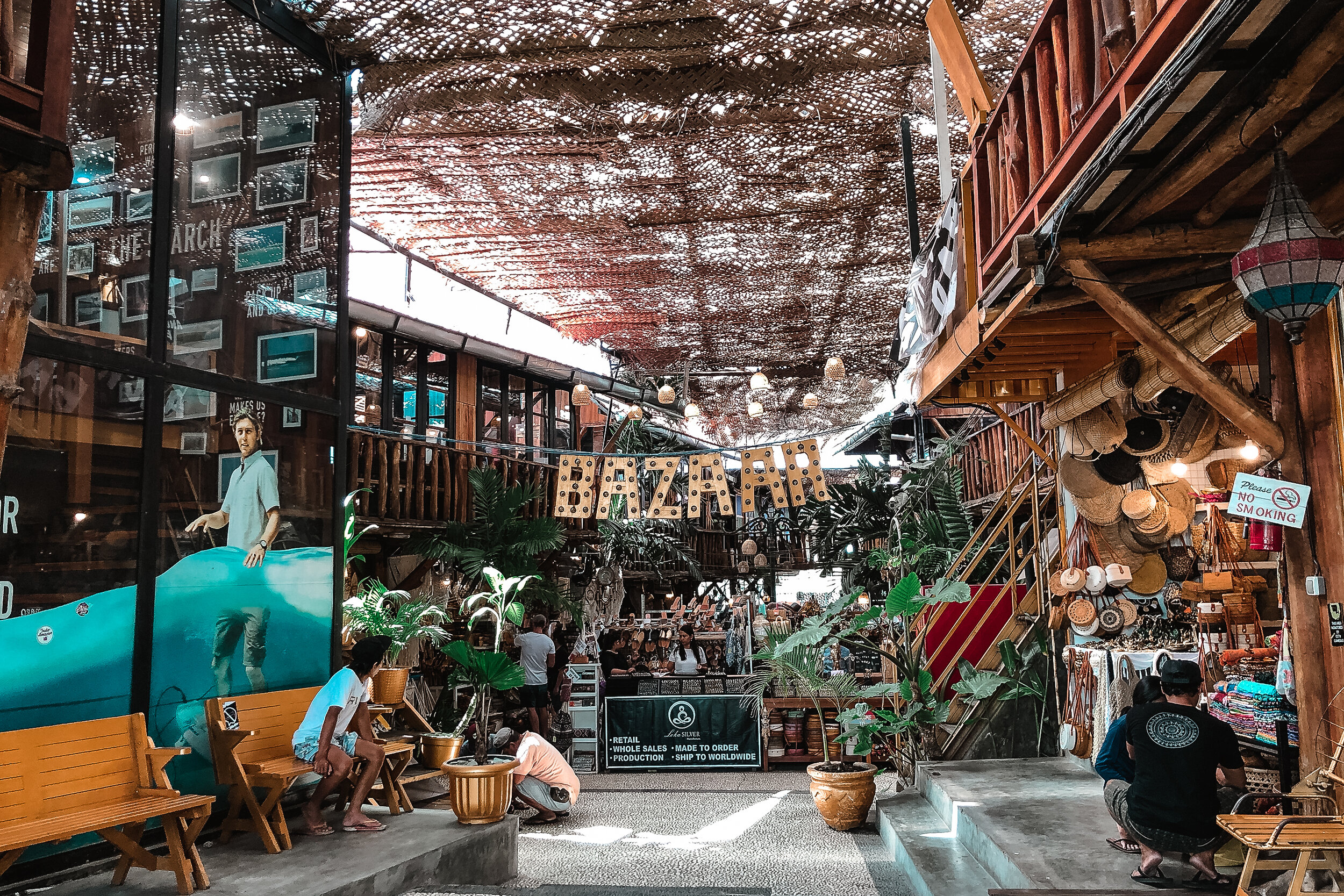
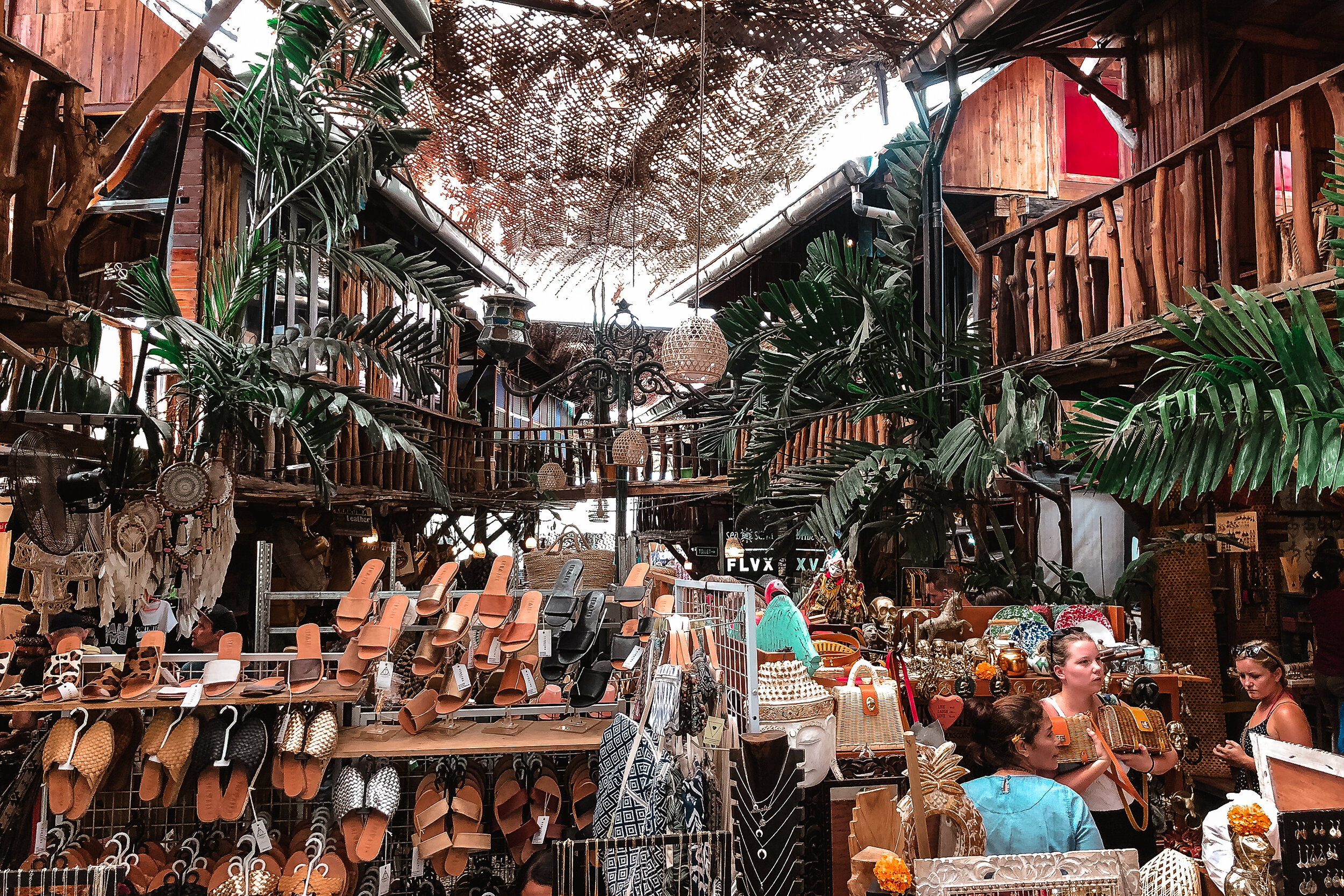
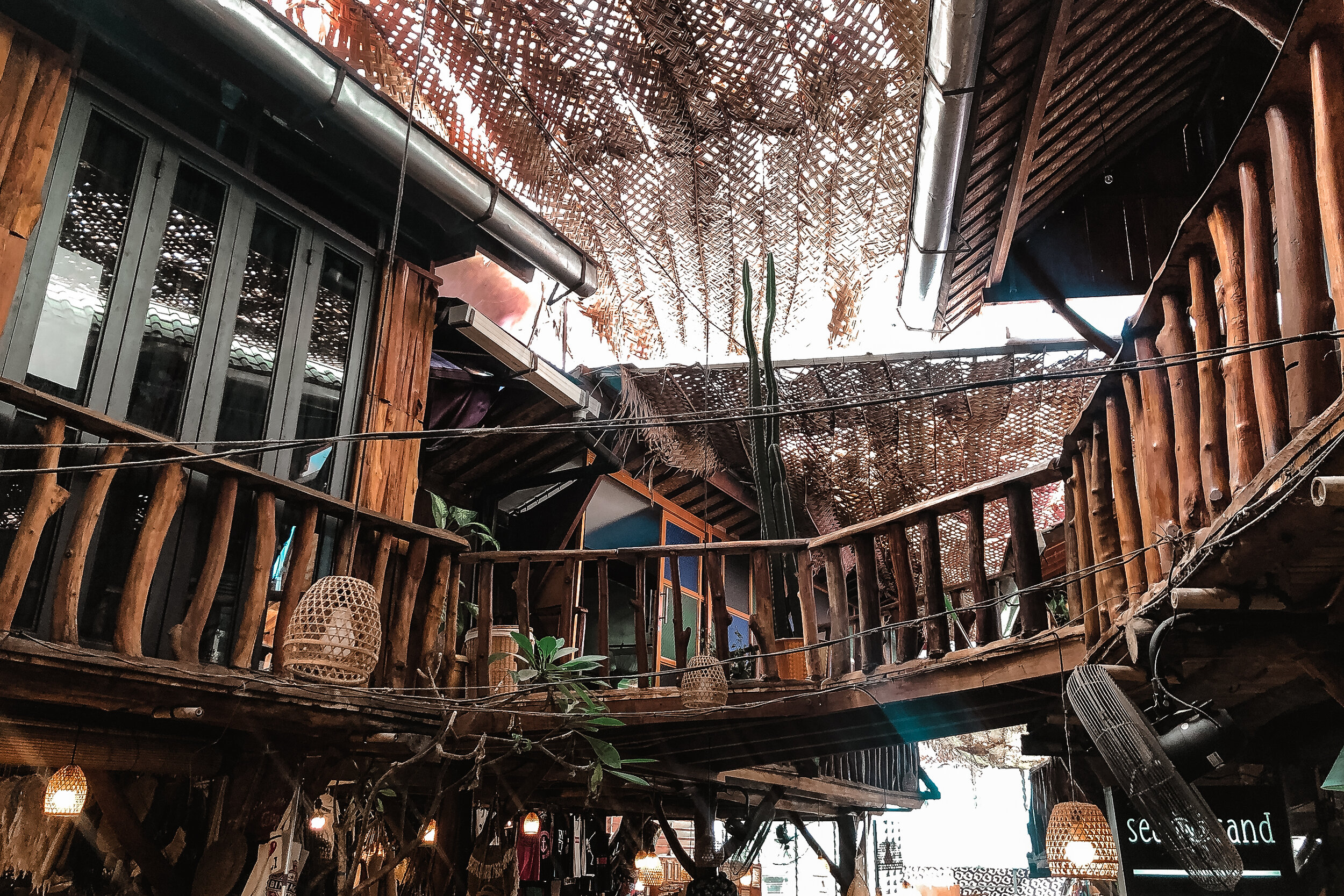
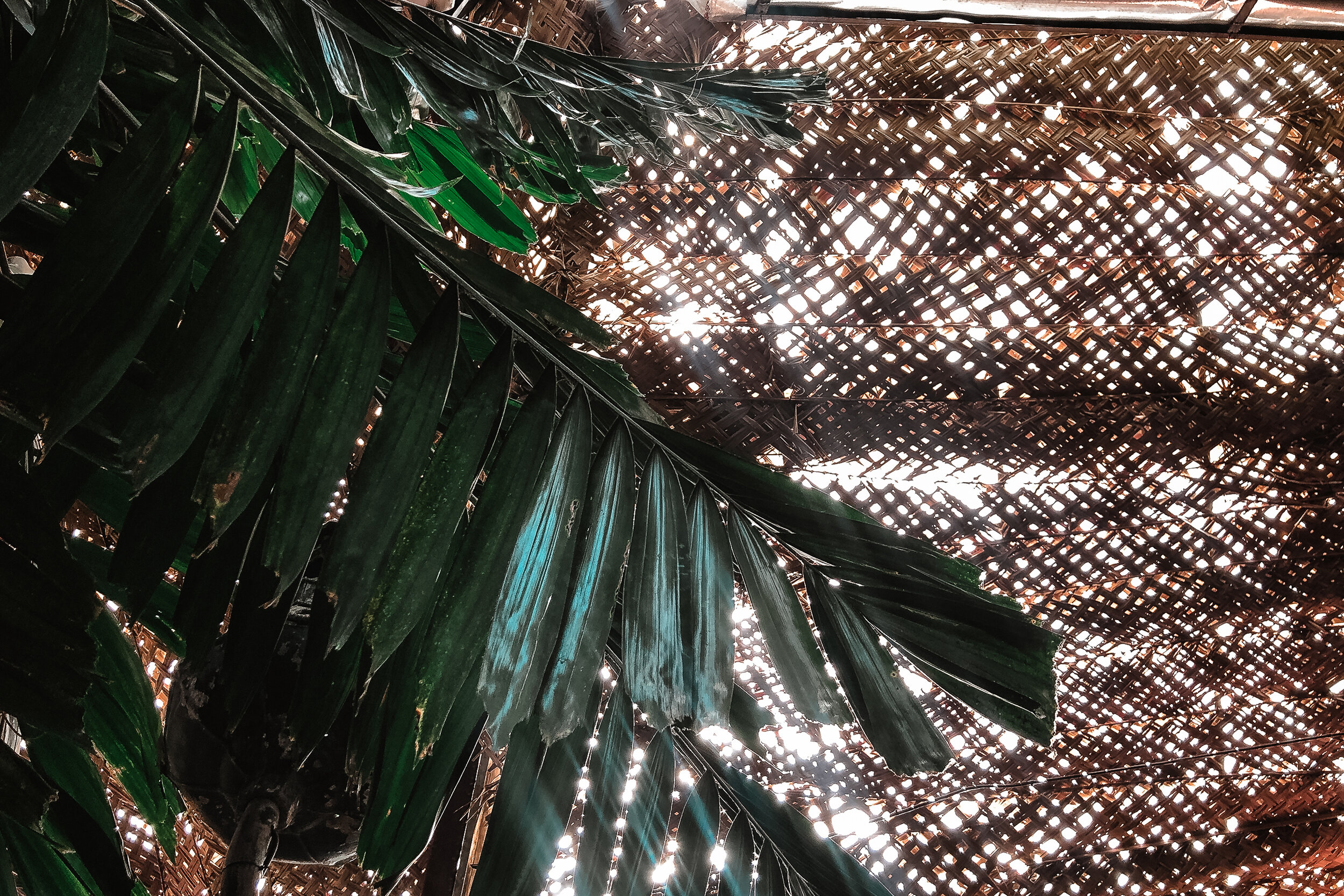
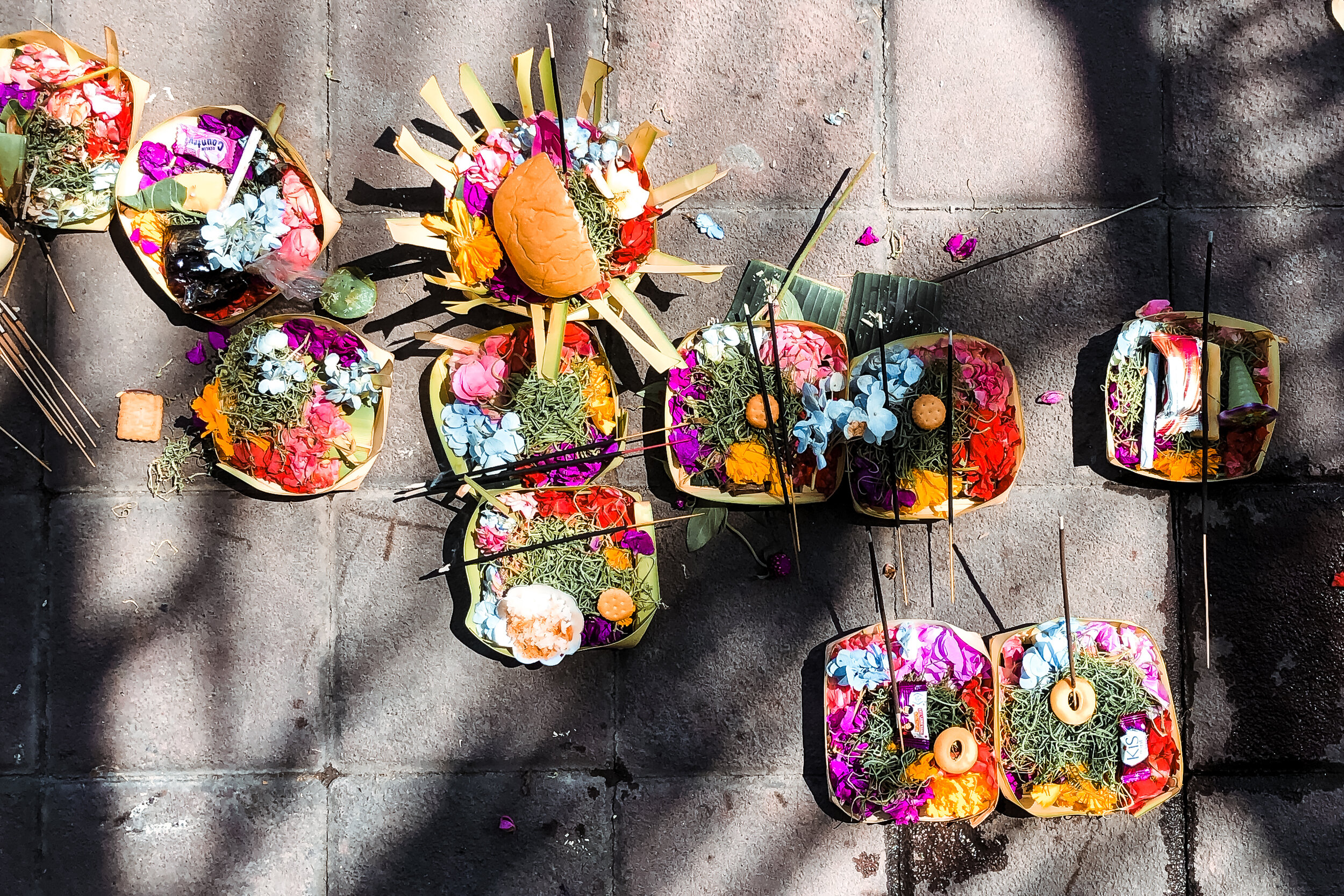
Markets
Love Anchor Canggu. An expansive indoor market with booths and vendors selling locally made home goods and crafts. You’ll often be offered a “special price.” Play along, haggle and never accept the first price. We picked up a pillow case and macrame plant holder for our apartment back in NYC.
Gypsy Market at La Laguna. A Sunday afternoon and evening market with live music, performers and vendors selling organic produce, cooked foods and hand made goods at La Laguna restaurant.
Old Man’s Market. Located in Old Man’s, a beer garden on Batu Bolong Beach, on the last Saturday of every month. The market hosts a mix of farmers, artisans, locals and expats all selling unique, sustainable and creative goods. If you’re not here while the market happens, the beer garden is a nice spot to grab a drink, watch the sunset or meet other travelers.
Things to Do
Take a Surf Lesson. The best surf lessons can be found by walking the beach. Many instructors and businesses have signs offering board rentals for 50K Rp ($3.50 USD) or 400K Rp ($28 USD) for a 2h lesson.
Get a Massage. Various types of massages are offered throughout Canggu and Bali in general for an affordable cost. Look for signs outside of businesses offering 60min or signature massage. It’s not uncommon to find one for 50-150K Rp ($3 - $11 USD)
Join a Beach Cleanup. At times, the currents bring in tons of plastic waste floating in the ocean. Join a beach cleanup or simply do your part to pick up any plastic you see.
Seminyak
Neighboring Canggu, this dense area is known for its expat community, street-food, international restaurants, high-end beach clubs, pockets of LGBTQ nightlife and white sandy beaches. We spent most of our time nearby in Canggu but ventured into this neighborhood as we walked down the shoreline and in-land for a floating brunch.
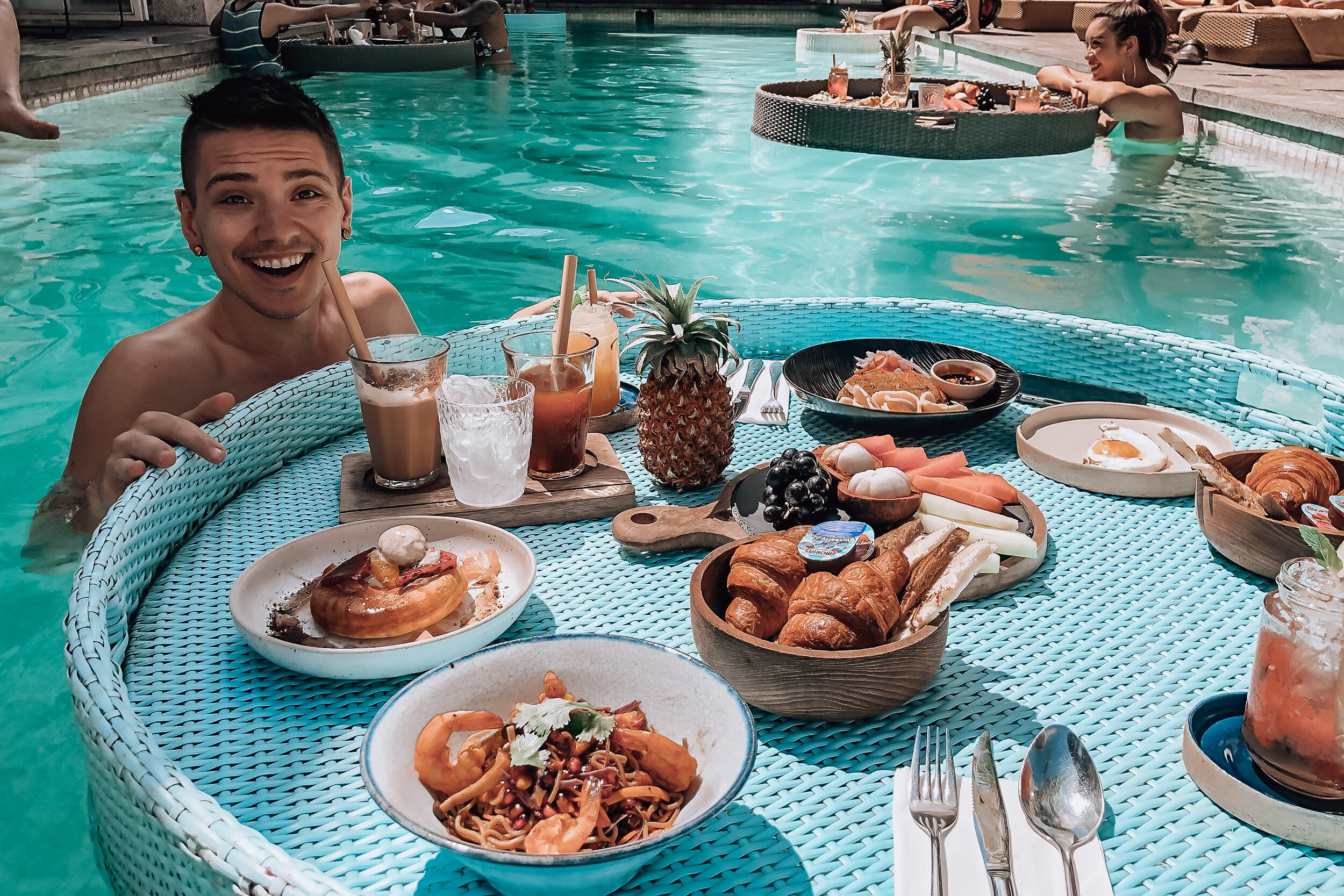
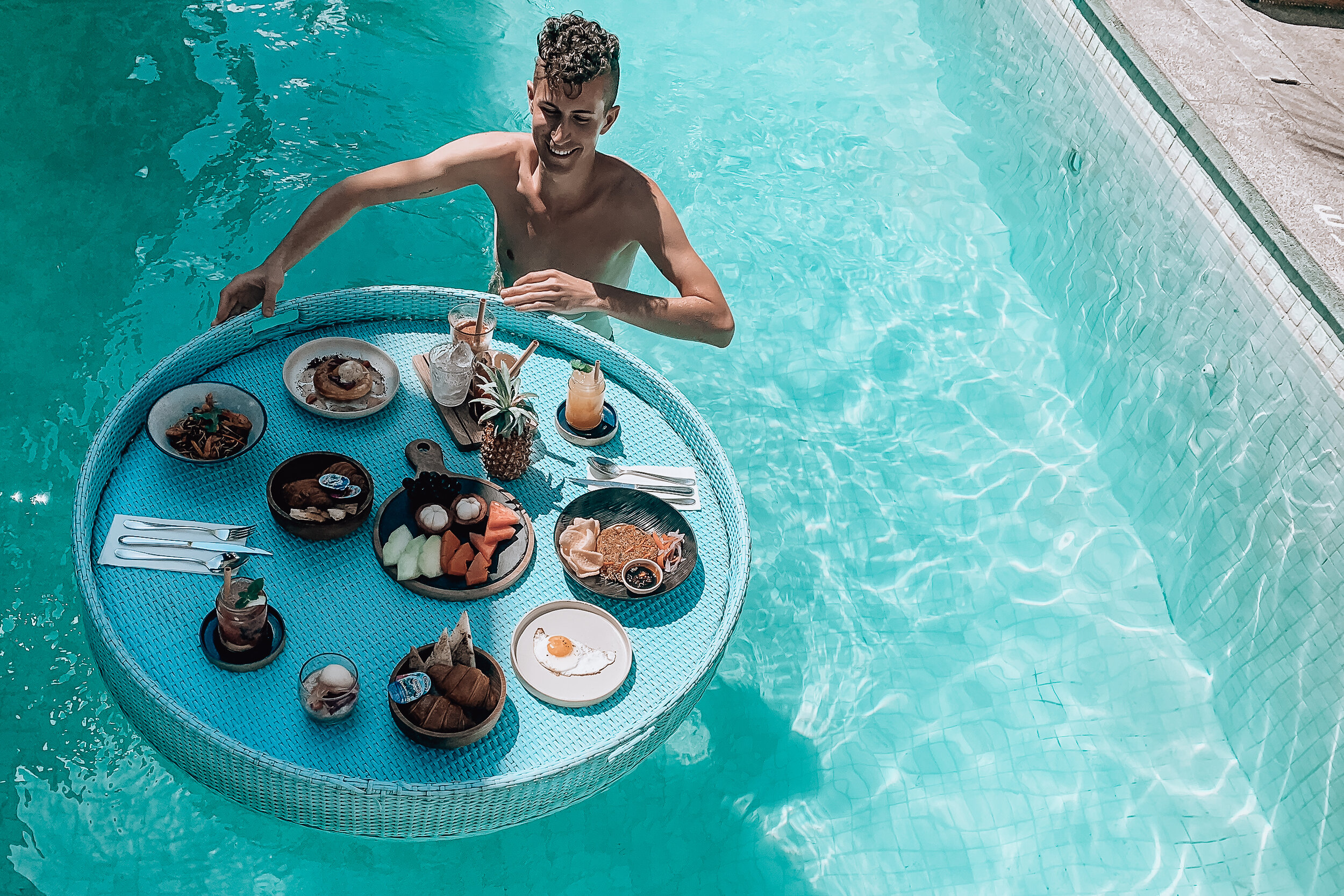
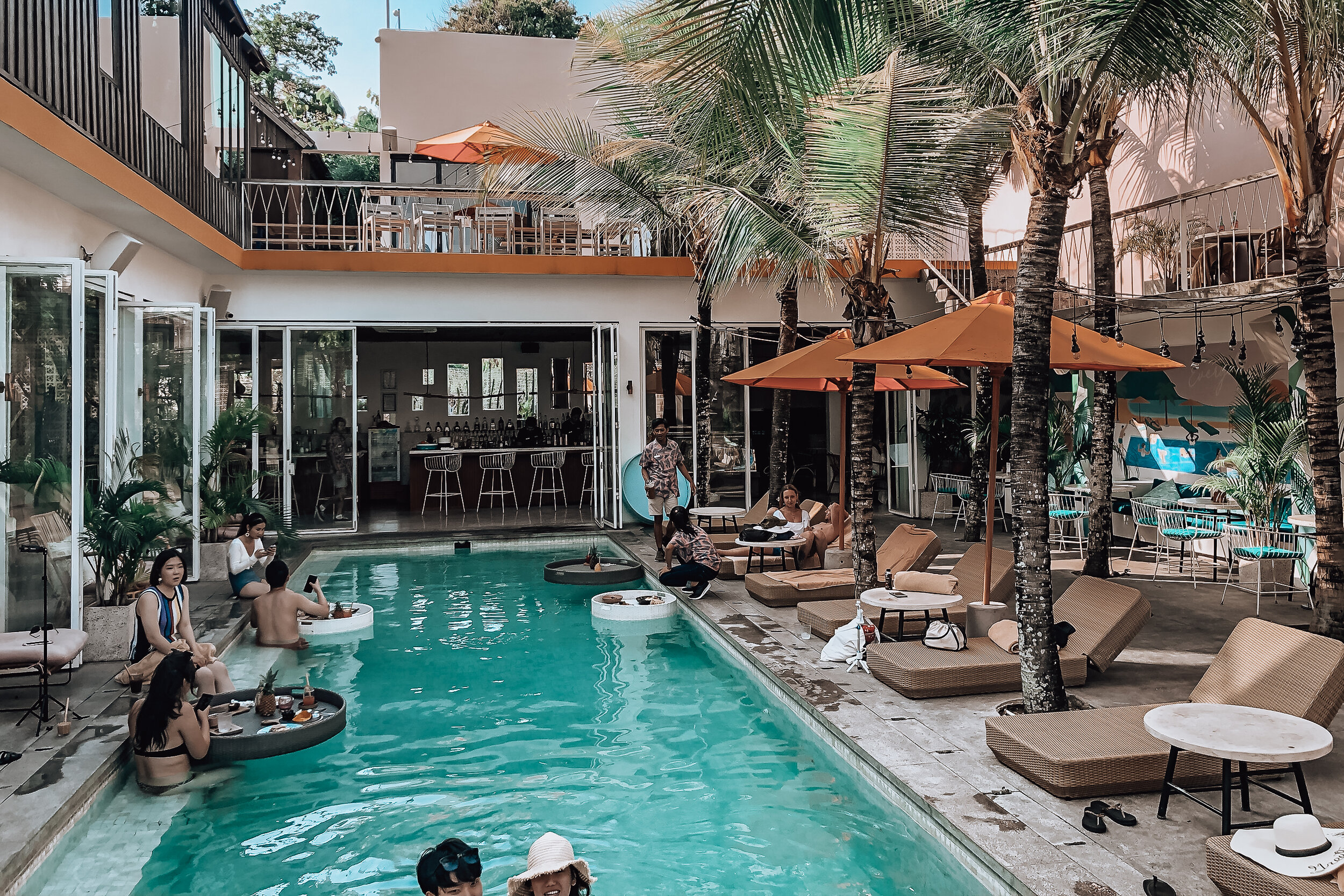
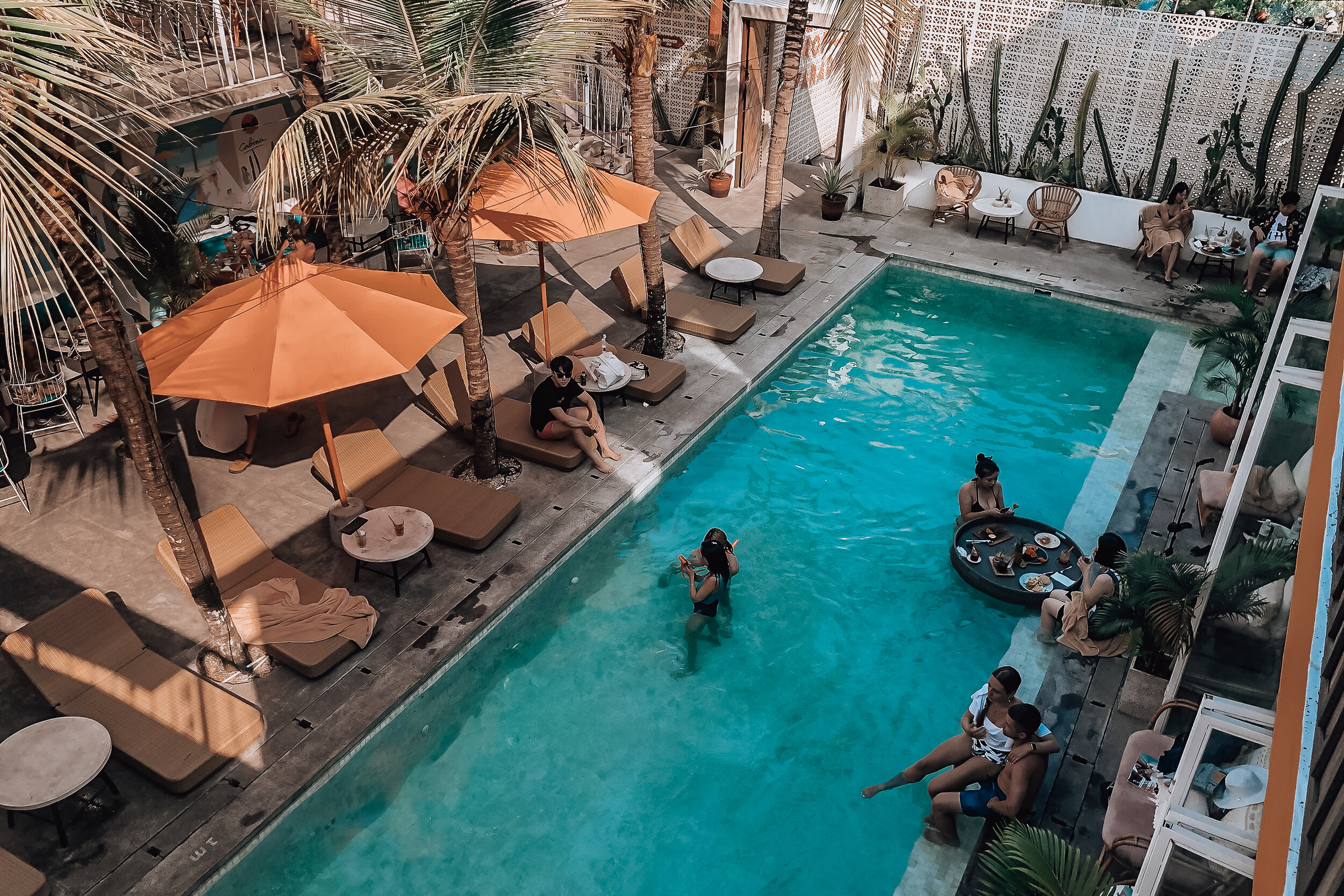
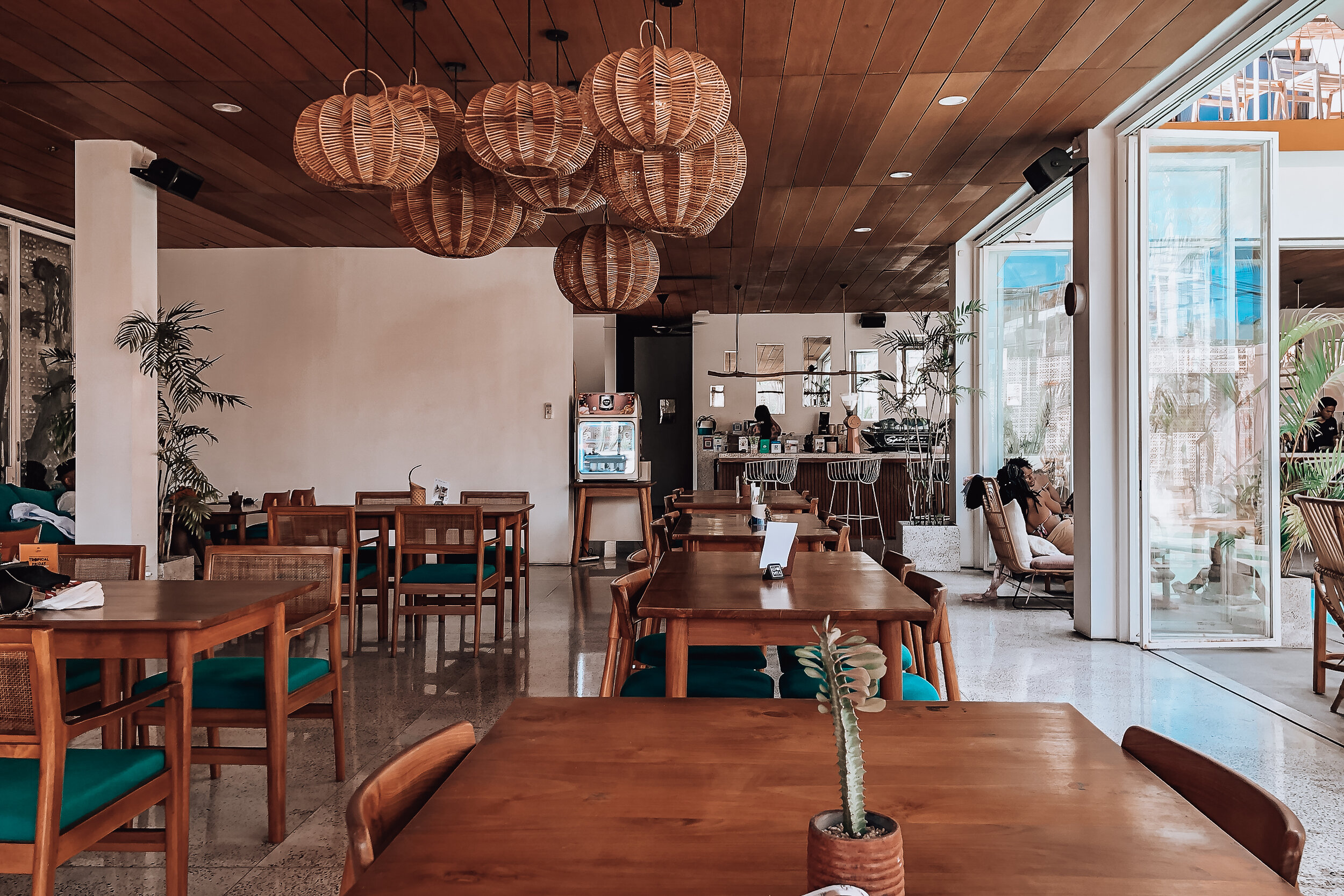
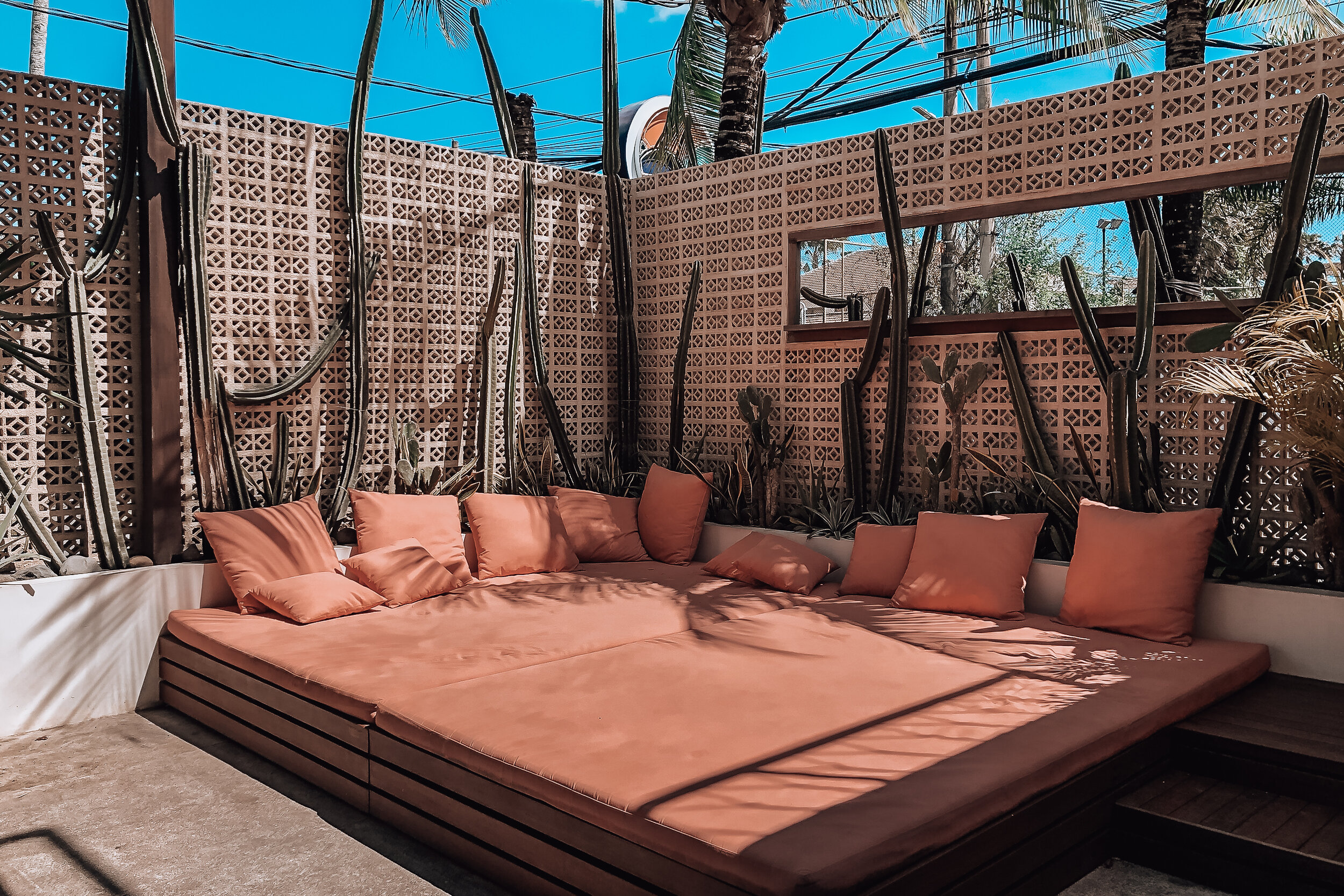
Floating Brunch
Making time for a floating brunch is a must do in Bali. It’s a poolside meal artfully presented in a floating basket. We visited Cabina, a restaurant with a turquoise pool, cacti & palm trees and comfy lounges surrounded by pink painted walls. Spending all afternoon here, we shared a tropical meal complete with fresh fruits & juices, fluffy pancakes and various Balinese bites.
Seminyak & Double Six Beaches
The shoreline walk from Canggu to Seminyak takes about 30 minutes, depending on how many beachside stops you make. The main beach, Seminyak Beach, is a long stretch of mostly white powdery sand with surfing, large beach clubs and resorts. Past Seminyak Beach is Double Six Beach, a popular tourist beach with inexpensive food, drinks, chair, lounge and surf rentals.
Gili Islands
The Gili Islands are a series of three tiny islands off the coast of Lombok. We spent 4 days exploring the Gilis, bicycling through the palm groves, snorkeling in the ocean, watching for sea turtles and relaxing on the beach.
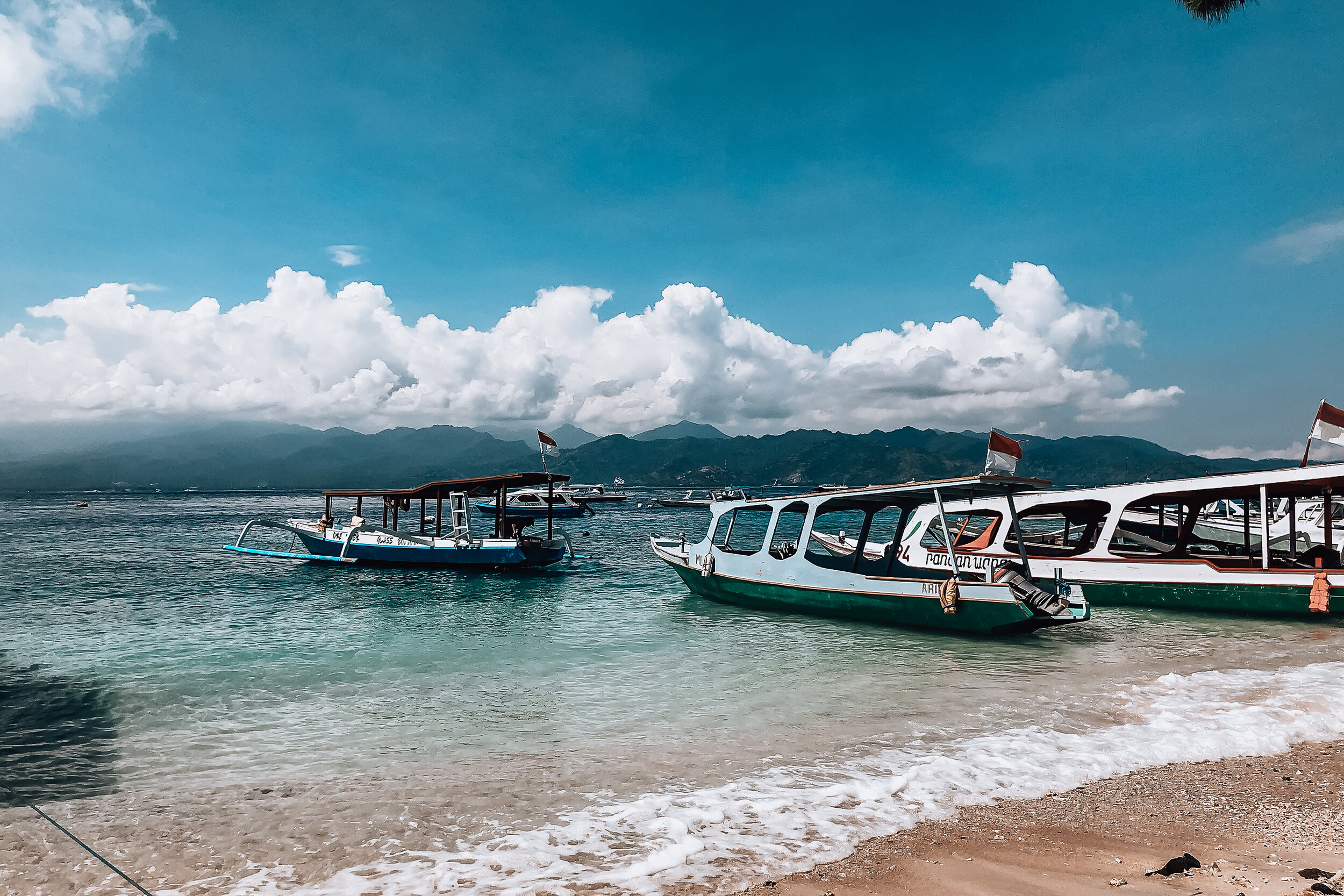
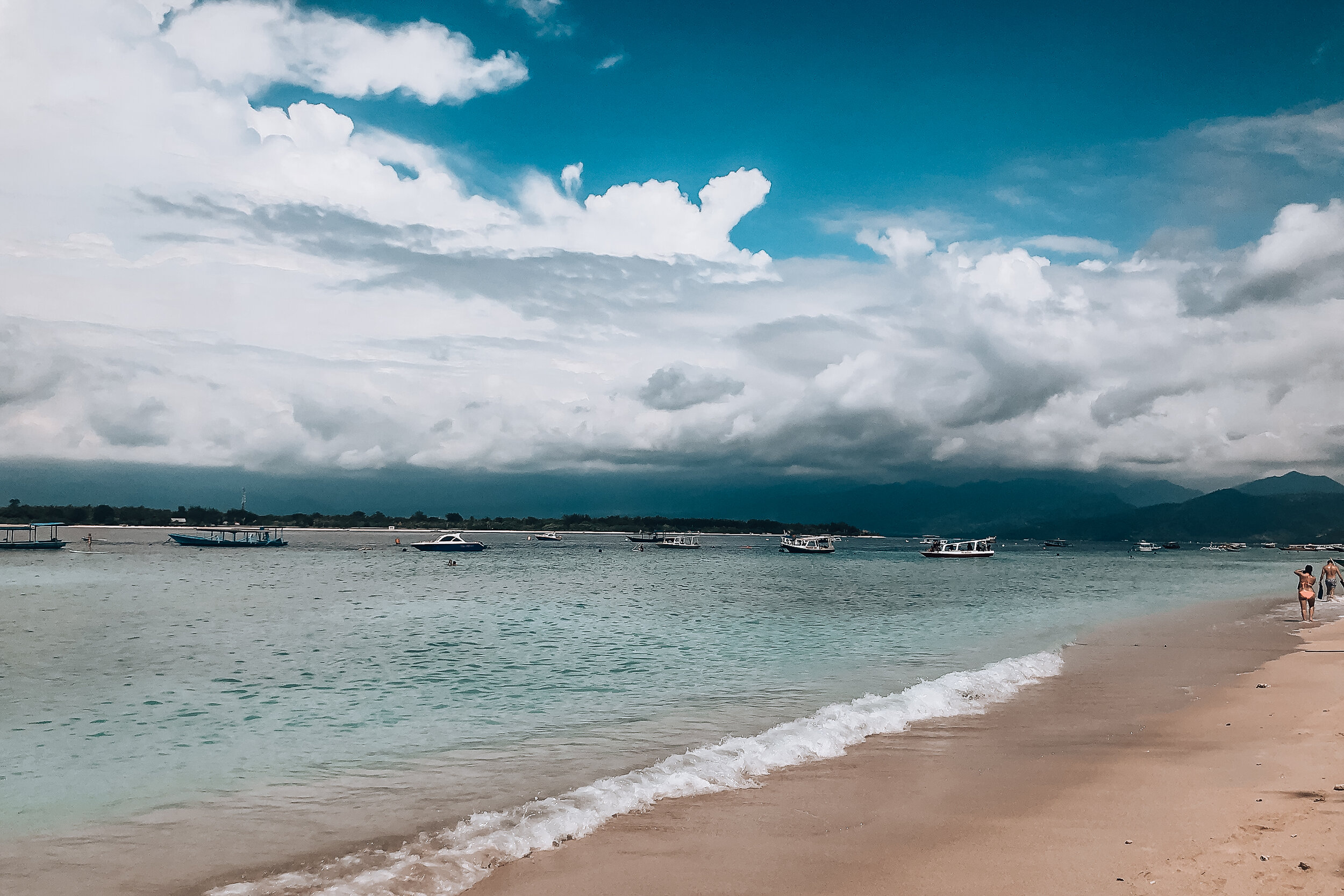
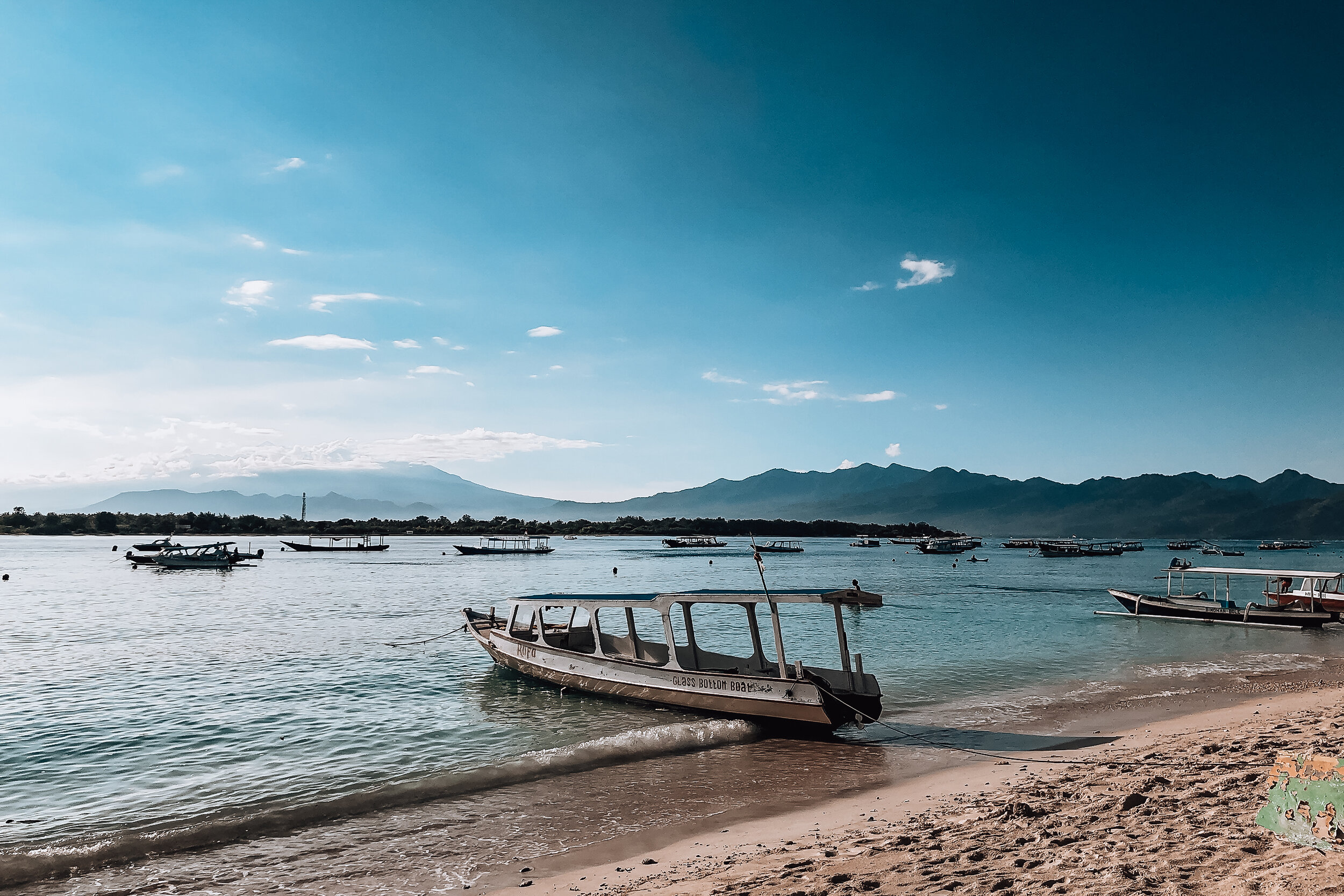
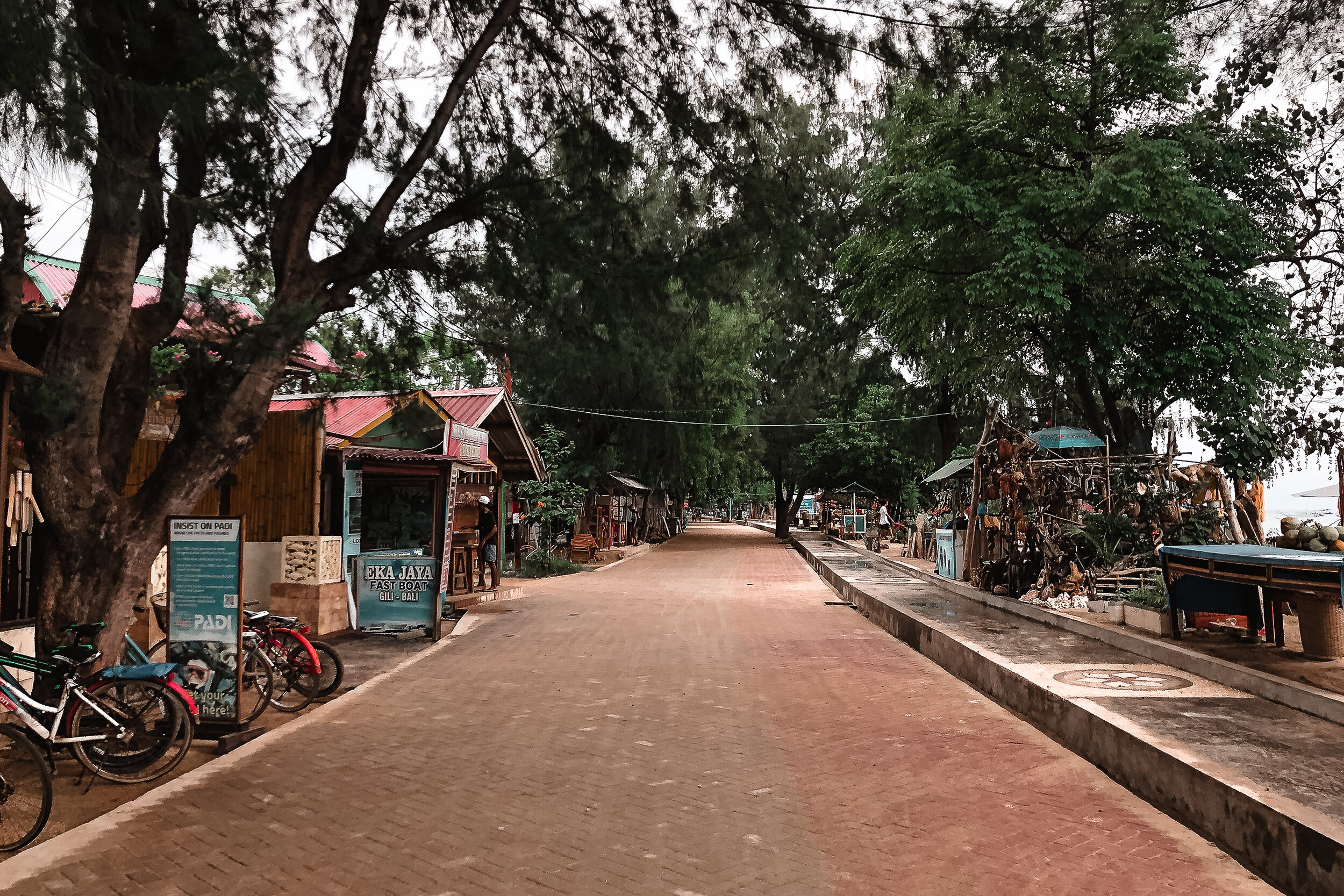
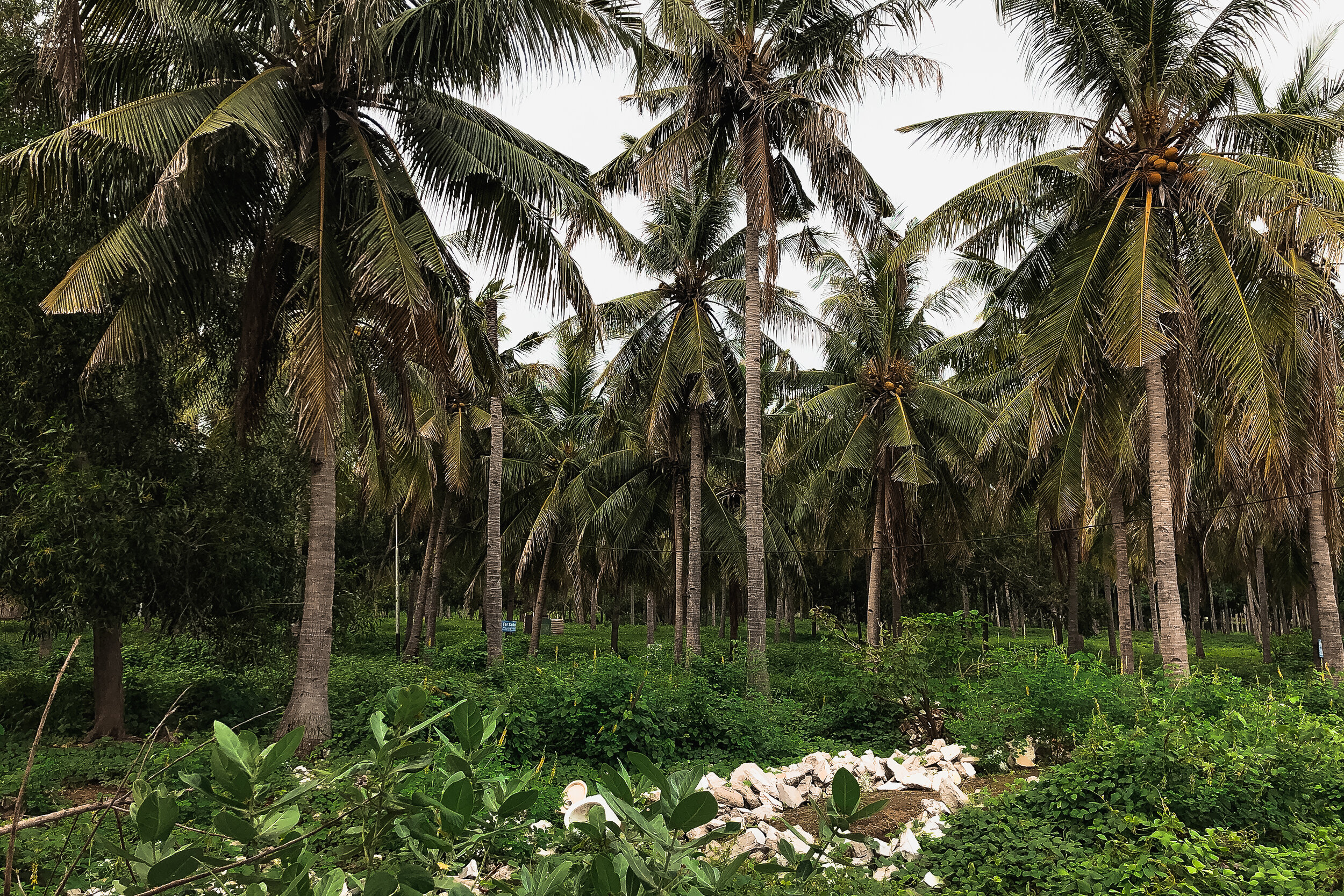
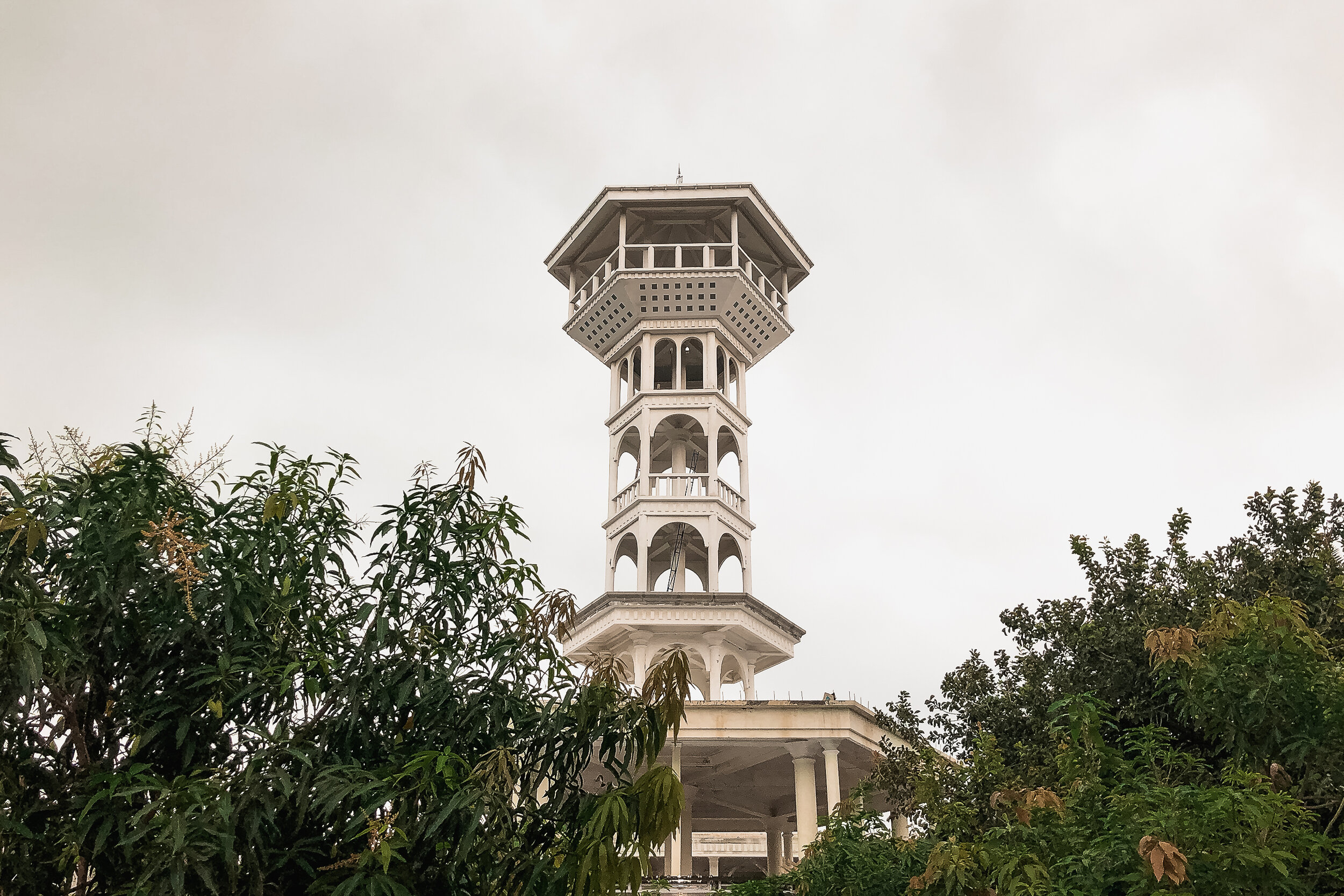
Gili Trawangan. Also known as Gili T, this island is the largest of the three Gilis. It’s the island where we stayed while visiting. It is the most lively and popular place to stay with a large number of restaurants, bars and places to stay around the perimeter of the island. The interior of the island is covered in palm groves and the homes of local families.
Gili Air. Located just across from Lombok, Gili Air has uninterrupted views of Mt. Rinjani. Similar to Gili T but smaller in size, it is known for its dining, nightlife, marine activities and ocean swings.
Gili Meno. Located in-between Gili T and Gil Air, it is the smallest, quietest and most relaxing of the three islands.
Getting Here
Take a speed boat. This is the fastest, safest and most hassle-free way to get between Bali and the Gili Islands. There are a number of departure points along the East side of Bali. Most speed boat companies can arrange transportation to bring you to the departure point from any location in Bali. We booked roundtrip tickets through Blue Water Express. Including luggage, transportation from Ubud and to our later accommodation in Bali, we paid 1.1m Rp each ($78 USD). Depending on your departure location, the speed boats can take anywhere from 2-4 hours.
Getting Around
Rent a Bike. The Gilis are very small. Though they’re easily walkable, the best way to get around is on a bicycle. You can ride around the perimeter of the largest island in less than an hour or cross its center in 15 minutes. Most accommodations rent bikes for around 50K rp per day ($3.50 USD)
Island Hopping. Public boats ferry between each island’s main harbors at infrequent times between 9am and 4pm. Each trip takes about 30min and costs 25-50K Rp ($1.75 - $3.50 USD) Fast boats take about 15min and cost 85K - 100K Rp ($6 - $7 USD)
Gili T Beaches
The island is essentially one giant beach paradise! Based on location, here’s our breakdown to exploring the different corners of the island.
East & South East. The sandiest beaches and shallowest waters for swimming and sunbathing. Closest to the restaurants and bars of the main street.
North East. Also known as Turtle Point, this is the best place to spot sea turtles. The shallow warm waters are home to sea grass where sea turtles feed. To spot them, rent a standup paddle or kayak and quietly wait in the water. The best time to go is before the snorkel tours show up at 10am. Eventually a sea turtle will poke its head above the water for air or even swim within feet of you.
North. Most beaches here are private for members of the resorts and hotels.
North West. There are several restaurants with smaller crowds than the on the Eastside of the island.
West. Nice restaurants to watch the sunsets and see Bali’s silhouette. The water is wavier due to the currents in the strait between Bali and Lombok.
Southwest. The best spot to watch the sunset over the Indian Ocean. A lot of diving tours frequent the waters on this side of the island to spot manta rays and sharks.
South. Mostly dead coral lining the beaches.
Coral Reefs
We had read about the stunning coral reefs home to all manner of sea-life. Unfortunately, many of the coral reefs have suffered extreme bleaching due to rising sea temperatures in the shallow waters. During our snorkel tour, we only saw the occasional sign of life among the black and grey decaying coral reefs covering the ocean floor. This was evident on shore, especially along the west half of Gili T. Vast stretches of the beaches were covered in piles of dead coral that had washed up.
To protect yourself and the living coral, bring water shoes and coral safe sunblock.
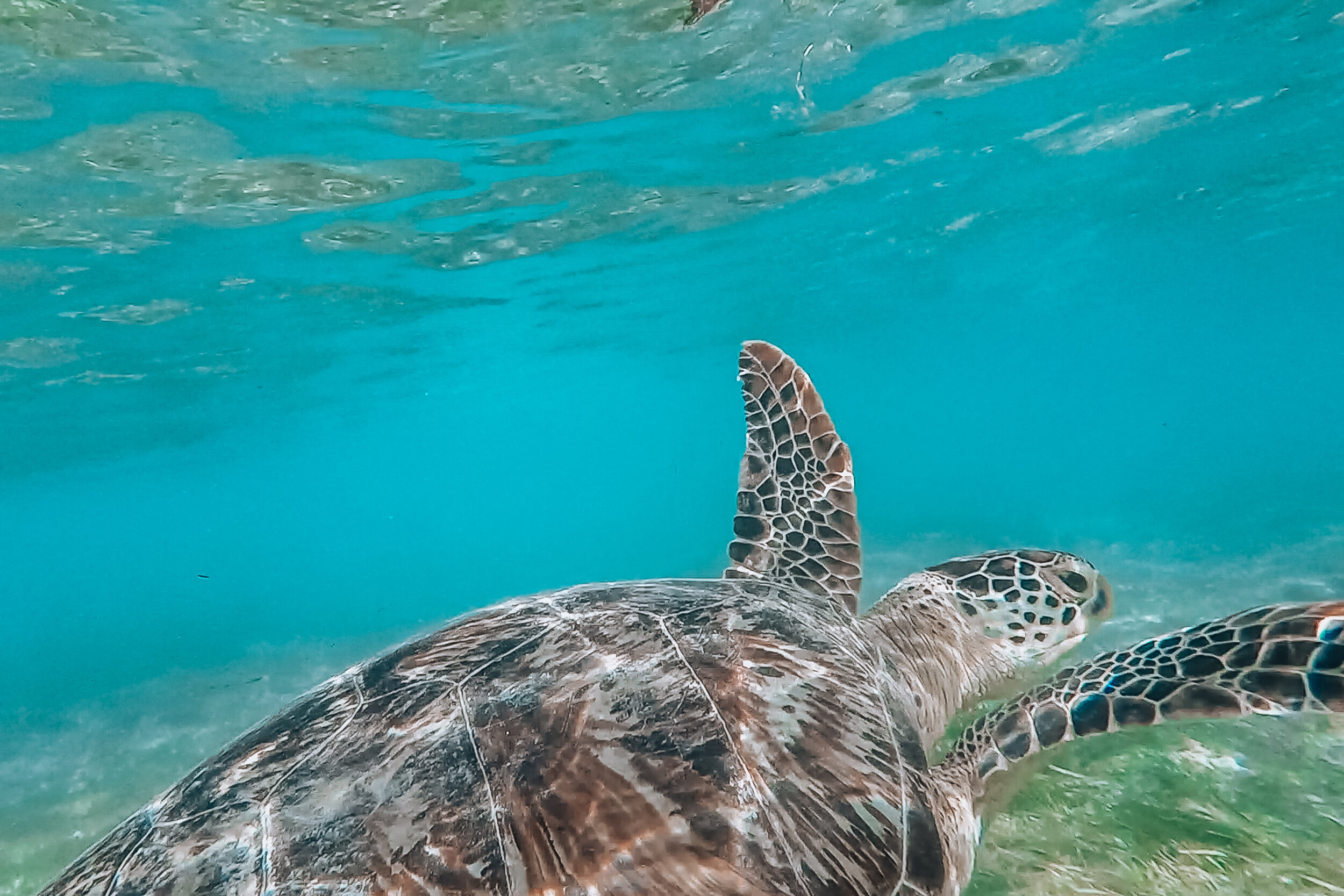
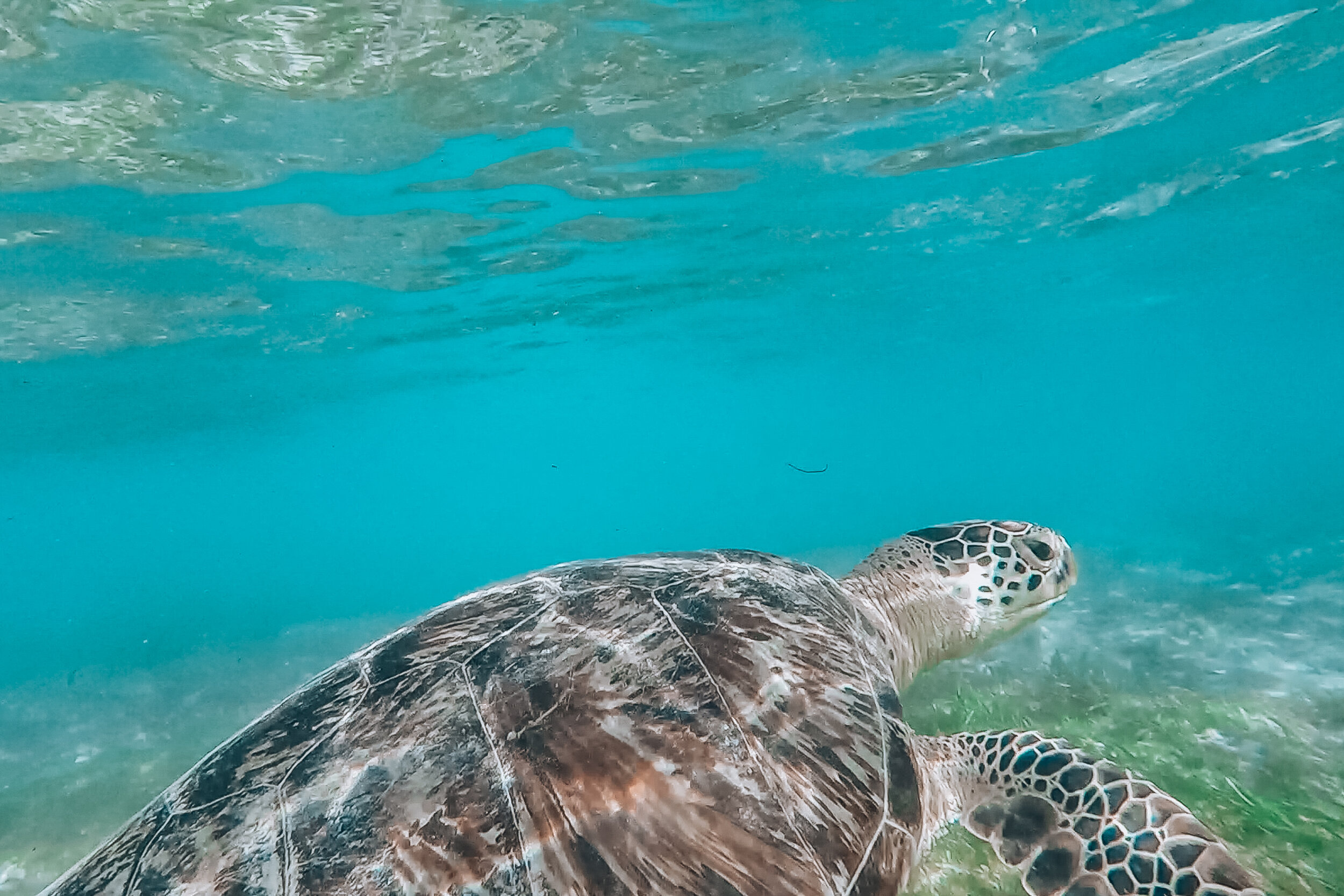
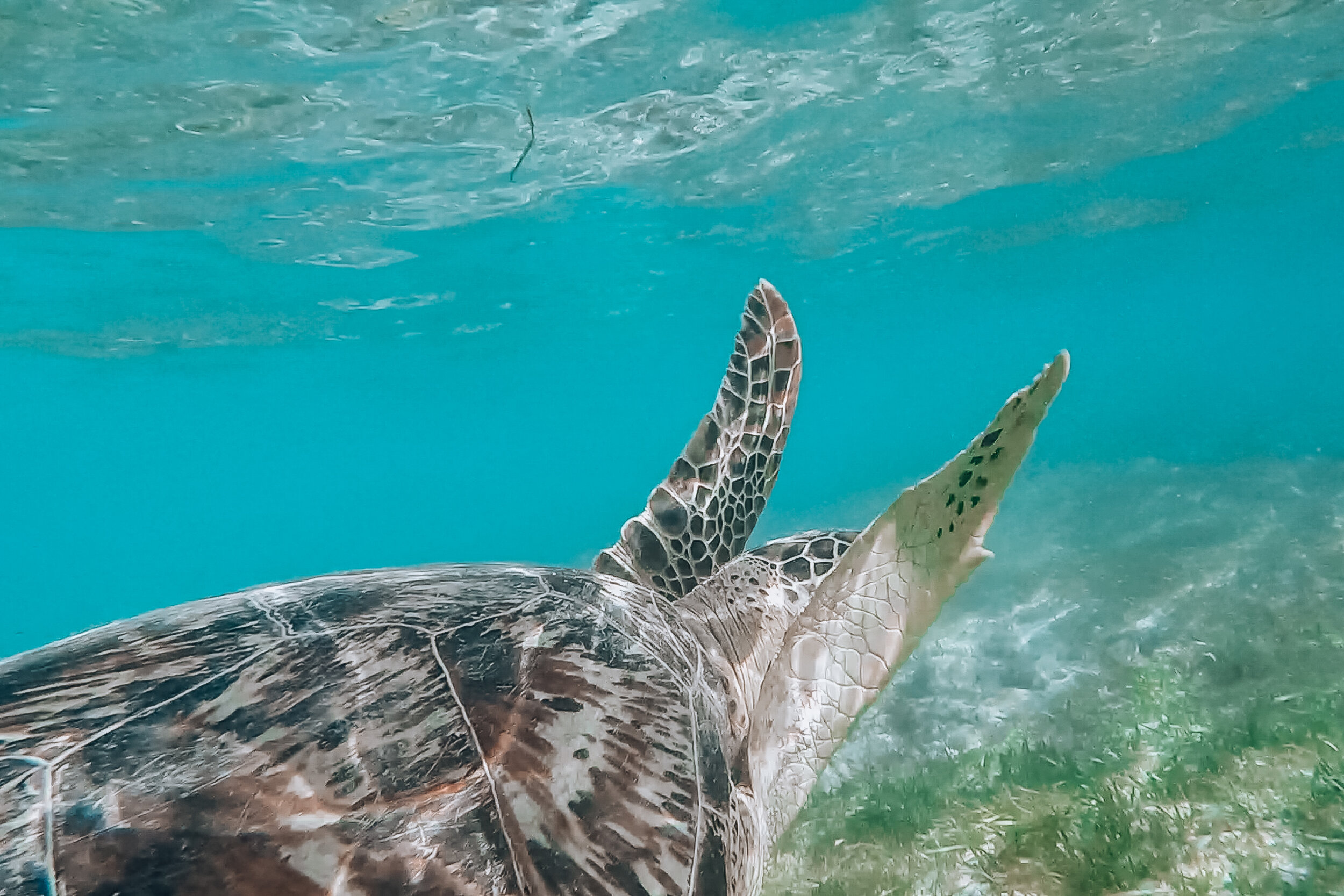
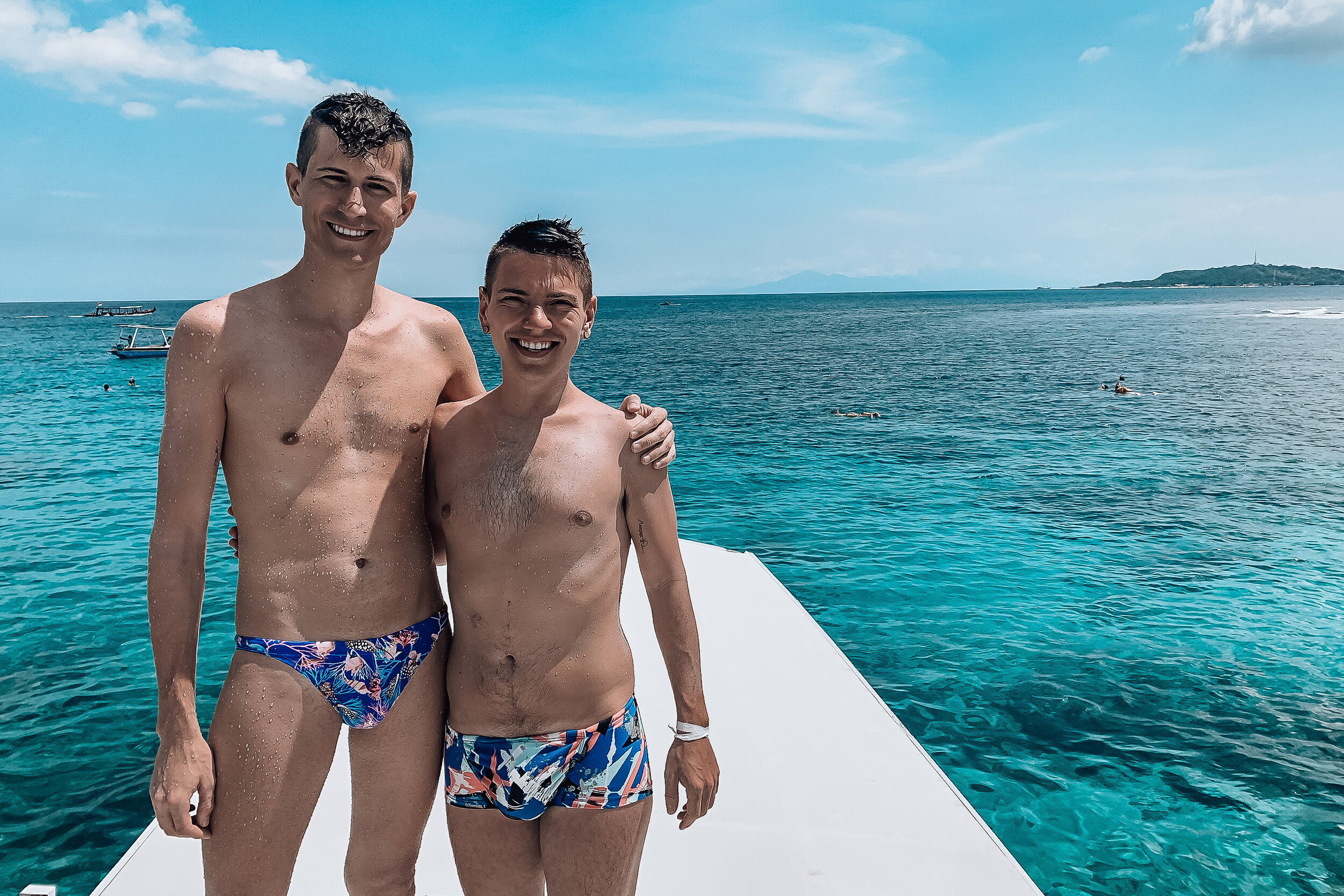
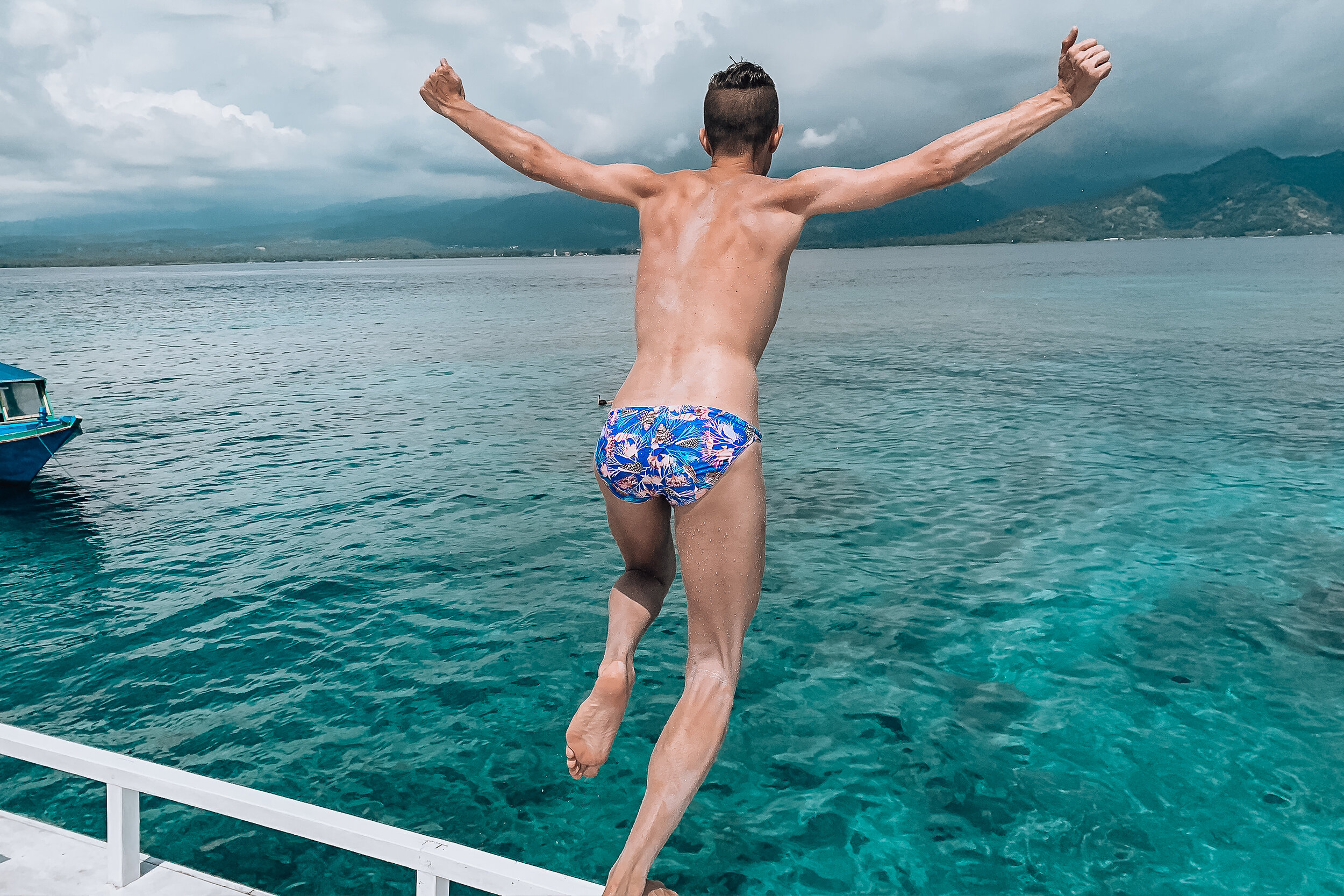
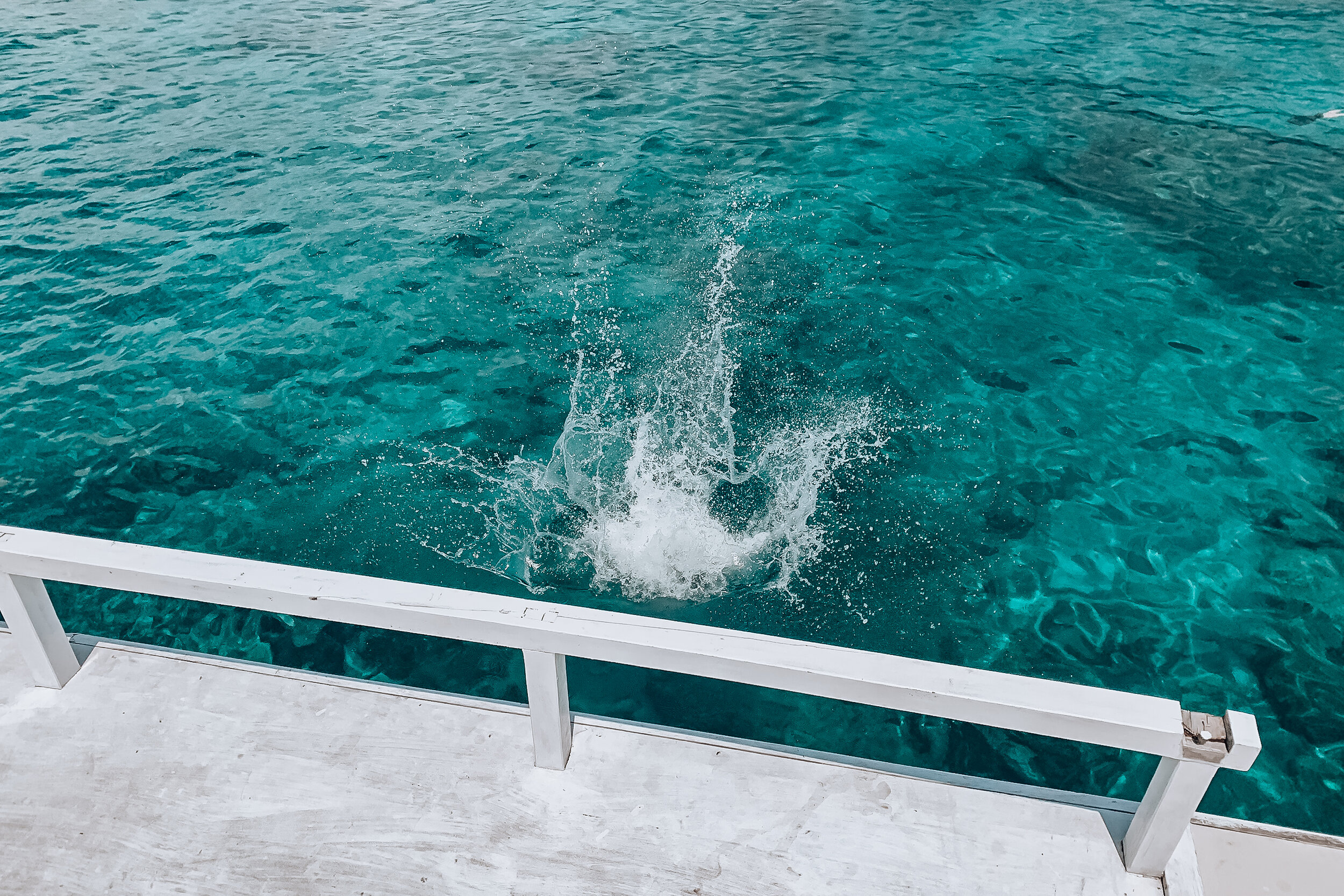
Things to Do
Go on a snorkeling tour! Many restaurants, dive school and guides along the main-street on Gili T will offer inexpensive snorkel tours around the Gili Islands. We only paid 50K Rp for a 4 hour snorkel tour ($3.50 USD)
On our tour, we snorkeled around the coast go Gili Meno where we saw the bleached reefs and an artificial reef called The Nest. The Nest is an underwater sculpture of human figures standing in a circle. After snorkeling here, we moved to an area on the other side of Gili Air with many species of fish. It was incredible snorkeling several feet below the surface with the fish swimming in all directions around us.
After snorkeling, we jumped and dove off the roof of the tour boat before stopping in Gili Air for lunch on the beach. It was a great experience and opportunity to meet travelers from around the world. We met some Brits on “holiday” and a group of siblings from Spain, one of which visited us later that winter in NYC.
Acrylic Kayaking. Rent an acrylic kayak and paddle around Turtle Point. Pro tip, select the kayak with minimal scratches on the bottom. The more scratches, the less you’ll actually be able to see though it.
Stand Up Paddle. Rent a stand up paddle and explore the strait between Gili T and Gili M. The water is usually calm making it easy to balance. This was another fun way to spot sea turtles.
Watch the Sunset. There are a number of beach clubs, restaurants and hotels with lounges, ocean swings and patios on the west and southwest sides of the island to watch the sunset.
Get a Bamboo Tattoo. A bamboo tattoo is simply a hand poked tattoo. There are a number of tattoo studios offering traditional bamboo tattoos across Gili T. We visited NoA The Master of the Bamboo Tattoo. Devin got a geometric elephant tattooed on his inner arm and I got a wave on my ankle. The process was sanitary and clean. We watched the artist clean all of his tools and present us with the an unopened package containing the needles he used for our tattoos. It’s worth it for the authentic experience!
Take a Cooking Class. One of the best meals we had on Gili T was the one we cooked ourselves at the Sweet & Spicy Gili Cooking School on the beach in front of Egoiste Restaurant. During the 2 hour cooking class we cooked multiple Indonesian staple dishes including:
Fried tempe and tofu in homemade peanut sauce
Mie goreng (spicy fried noodles and veggies),
Pepes ikan (fish cooked in a banana leaf)
Klepon (green colored rice balls filled with palm sugar)
Food & Drink
In addition to the traditional Indonesian dishes above, here are a couple of “foodie” things to know:
Look out for street carts selling grilled corn and satay skewers cooked over coconut husks.
Most restaurants are along the perimeter of the island.
The East Side has many local style restaurants and bars
The West Side has many beach club style restaurants and bars
If you’re visiting just before or during the celebration of Ramadan, there will not be any alcohol sales on the island.
Bukit Peninsula
The Bukit Peninsula is the southern most point in Bali. It’s known for its swimmable and surfable cliffside beaches, beach clubs and grilled seafood. We stayed here during our last few nights in Bali.
Getting Around
Plan for extra time. The peninsula is very hilly making it difficult to get around. There are only two main roads with smaller roads branching off causing frequent congestion.
Hire a taxi driver. Most drivers will offer to exclusively bring you around the peninsula. The advantage to this is that they’ll wait for you after dropping you off, be on call to pick you up and make great recommendations for things to do, sights to see and places to eat. Pro-tip: Download WhatsApp to keep in touch, negotiate pricing and never pay all at once. Daily drivers usually cost $250K Rp ($18 USD)
Rent a Scooter. Like throughout the rest of Bali, you can get around on a scooter. The only difference in the peninsula is that most places charge a 10-15K Rp parking fee (about $1 USD)
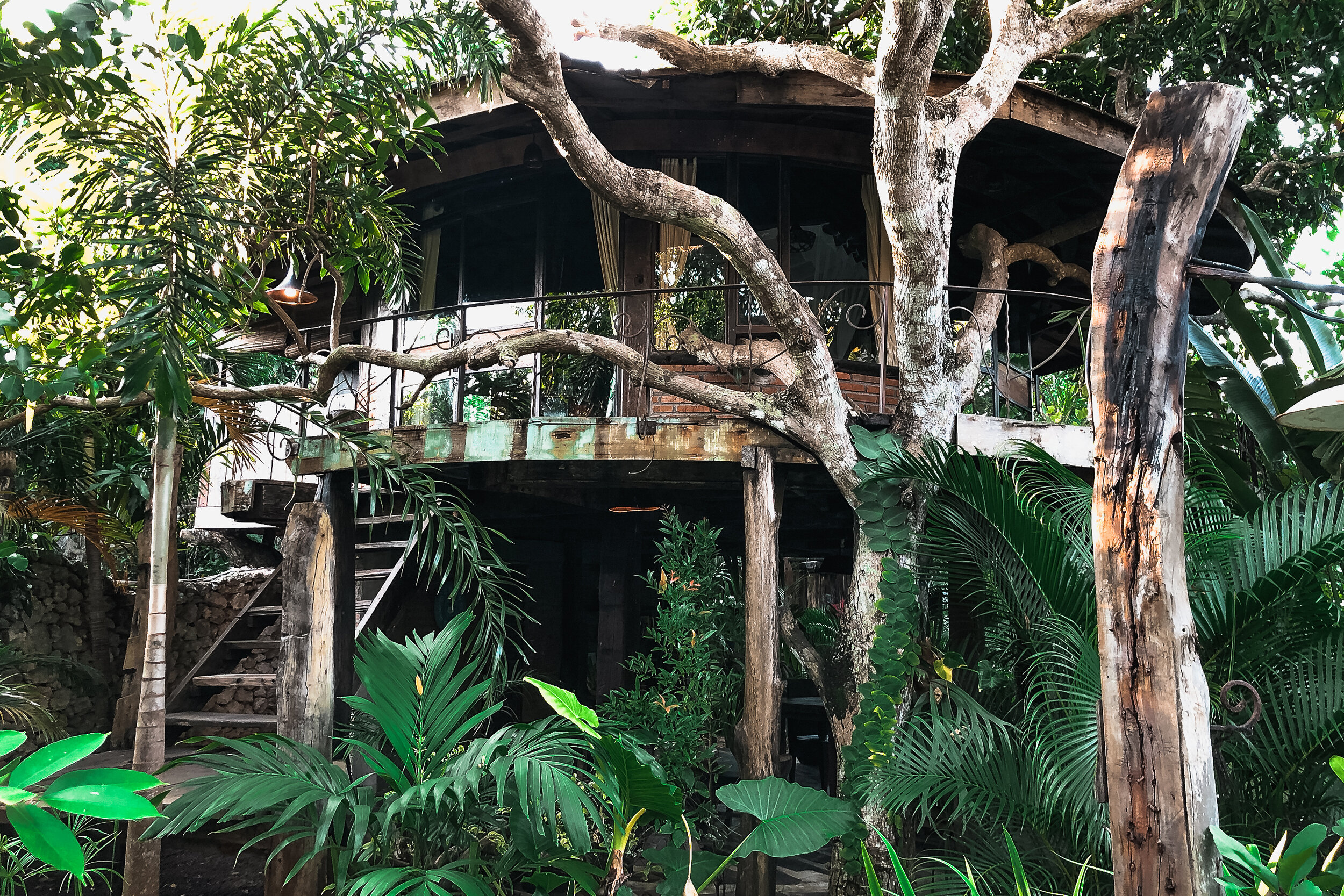
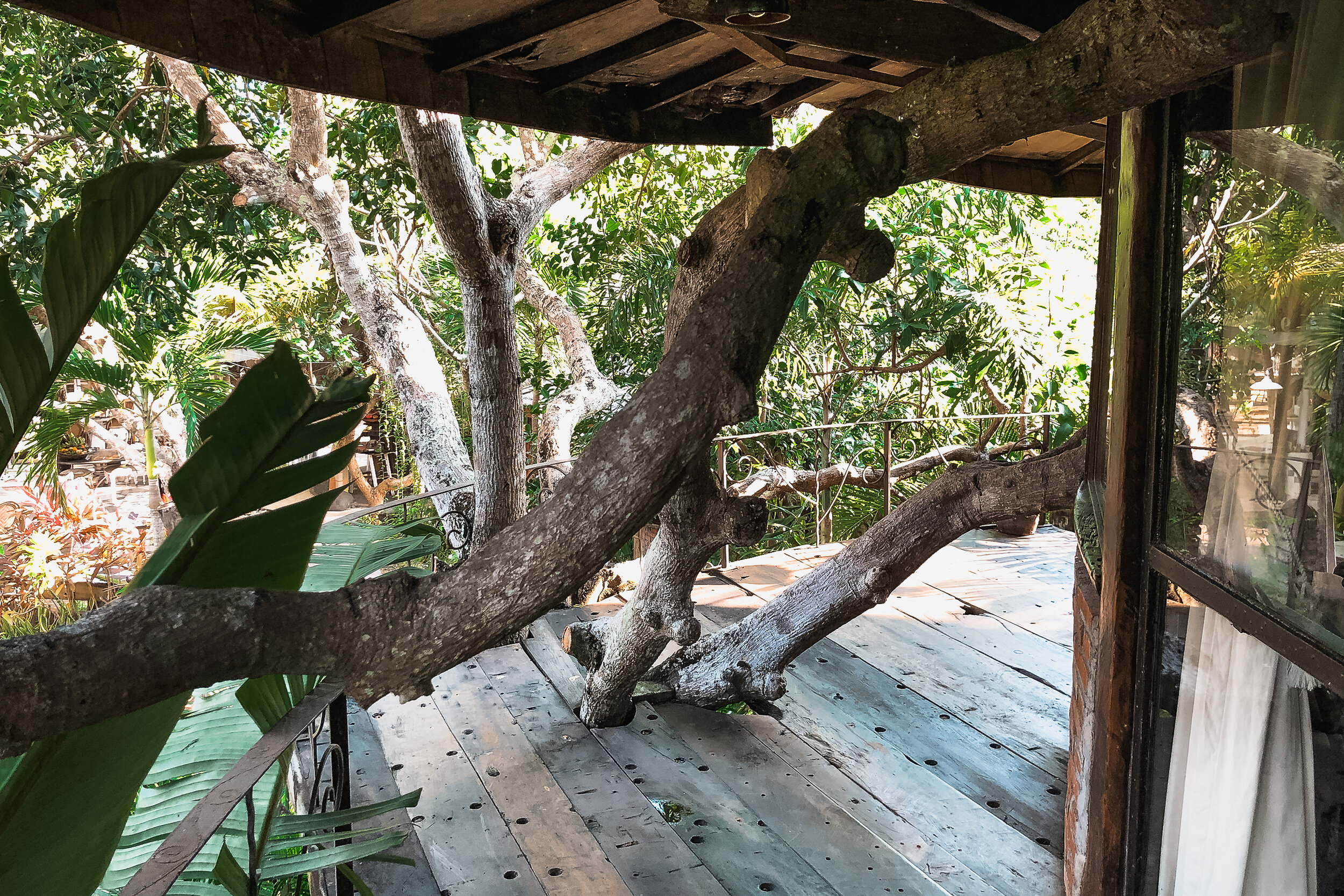
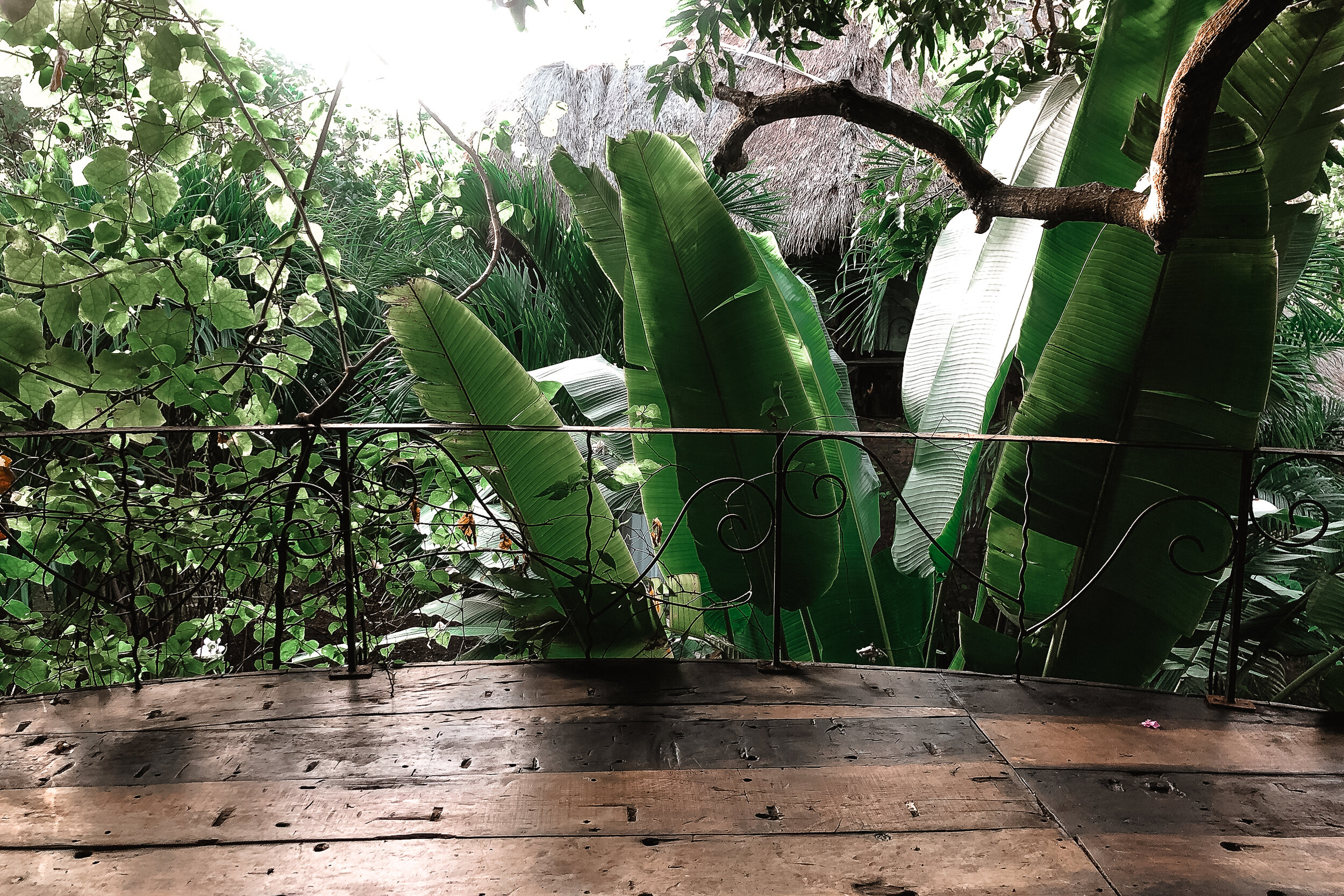
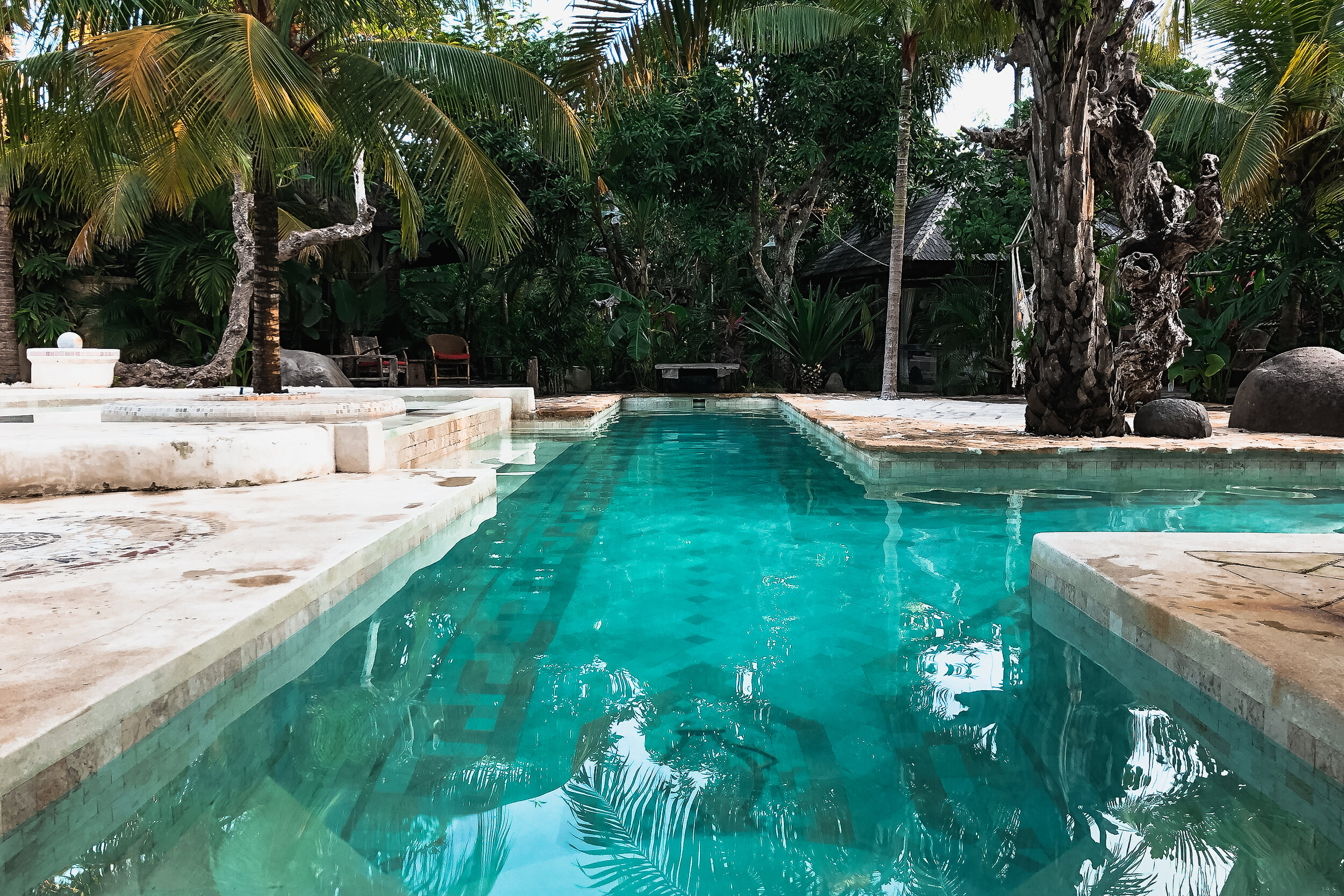
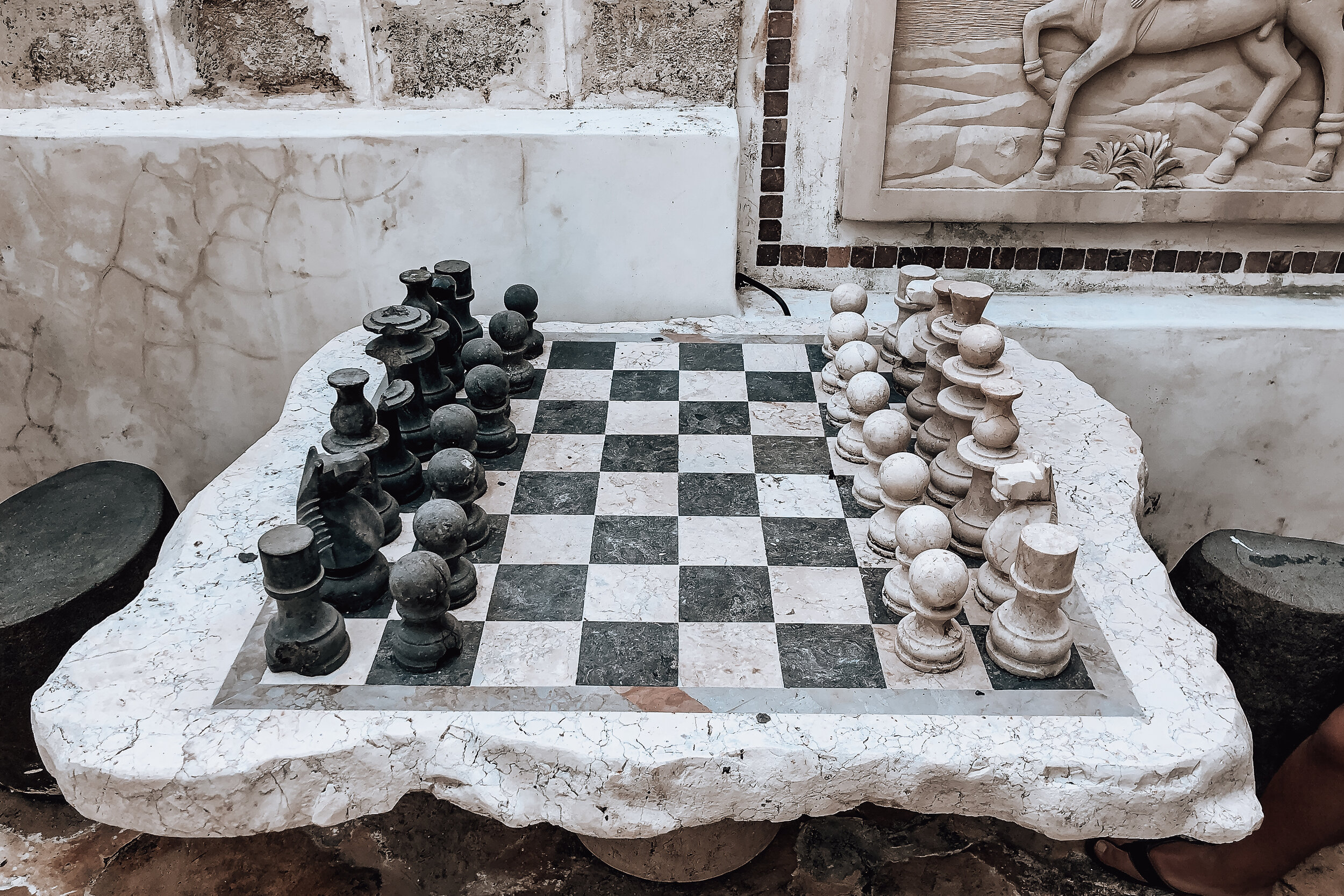
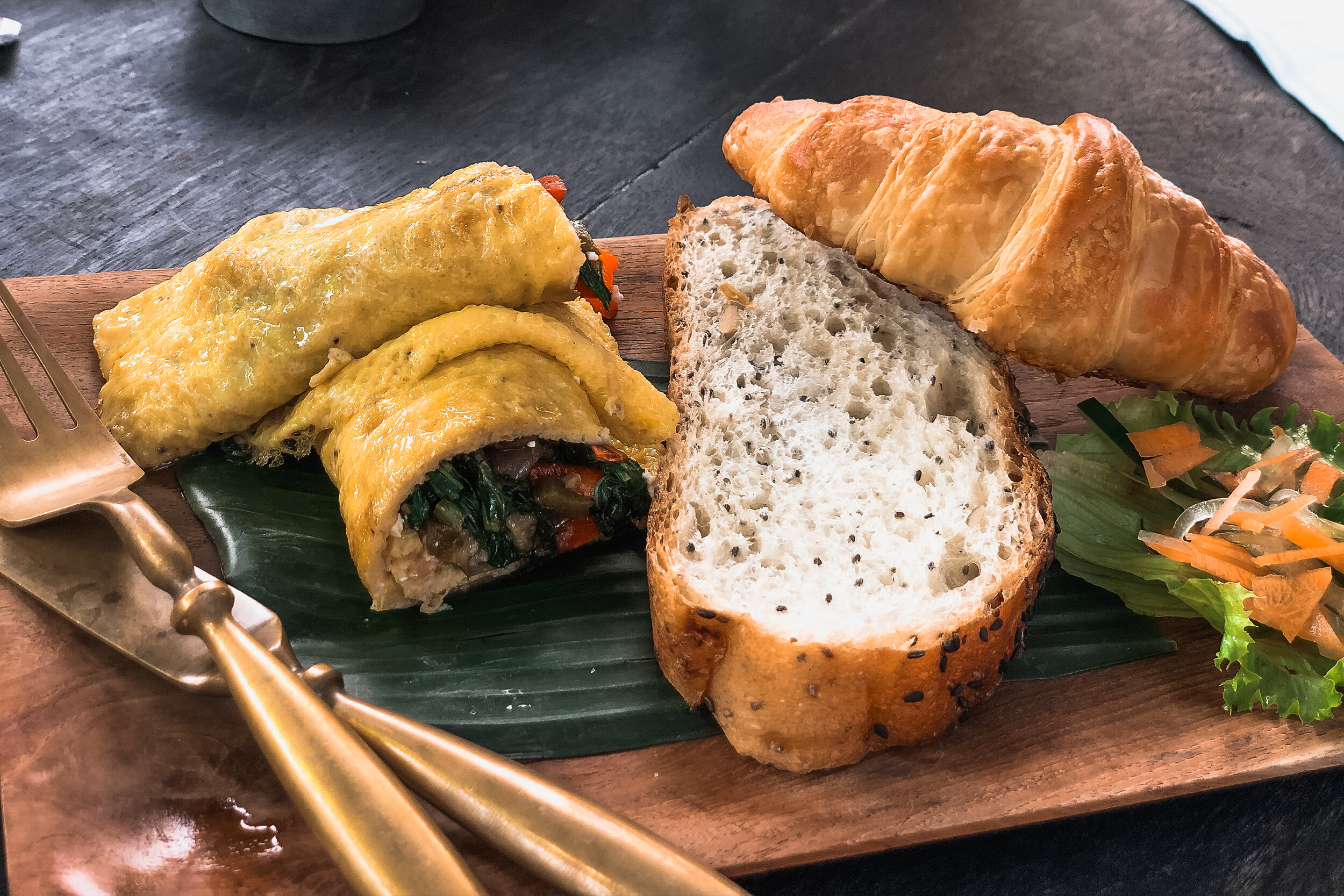
Where to Stay
We stayed in a jungle tree house at an estate called The Alchemist, a relaxing and adventurous end to our stay in Bali. The property had a restaurant and bakery serving a mix of traditional Balinese and French cuisine which made for delicious breakfasts with tropical fruits, fresh croissants and poached eggs. The back of the property had a stunning lap pool, large stone chess set and a few cottages for other guests and the owners.
Things to Do
Have Bali High Tea. Visit the Orchid Tea Lounge late one morning for Bali High Tea. The tea room is a modern greenhouse decorated with hundreds of blooming orchids. The tea service was especially cute with all the cakes and treats either wrapped in or served on banana leafs.
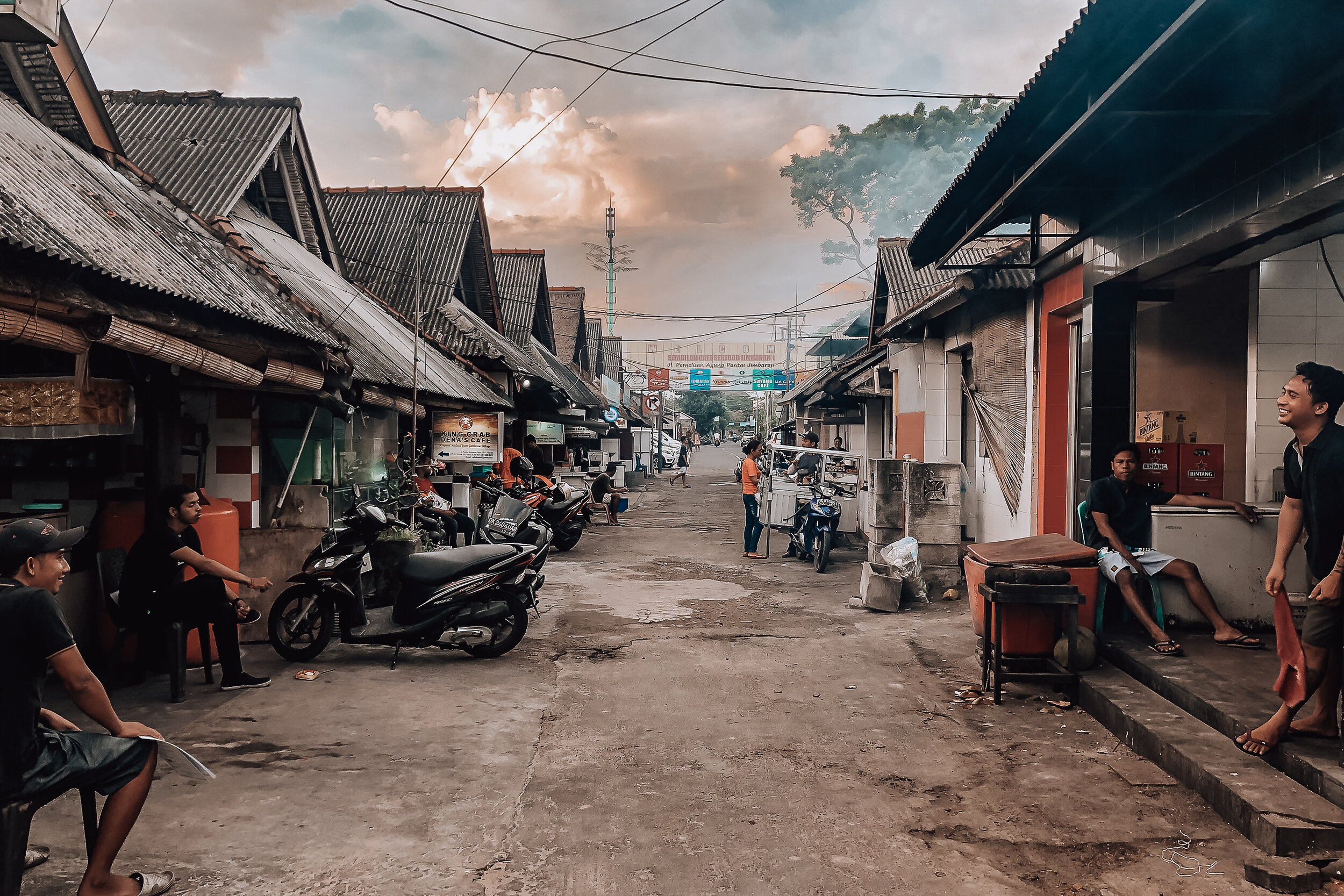
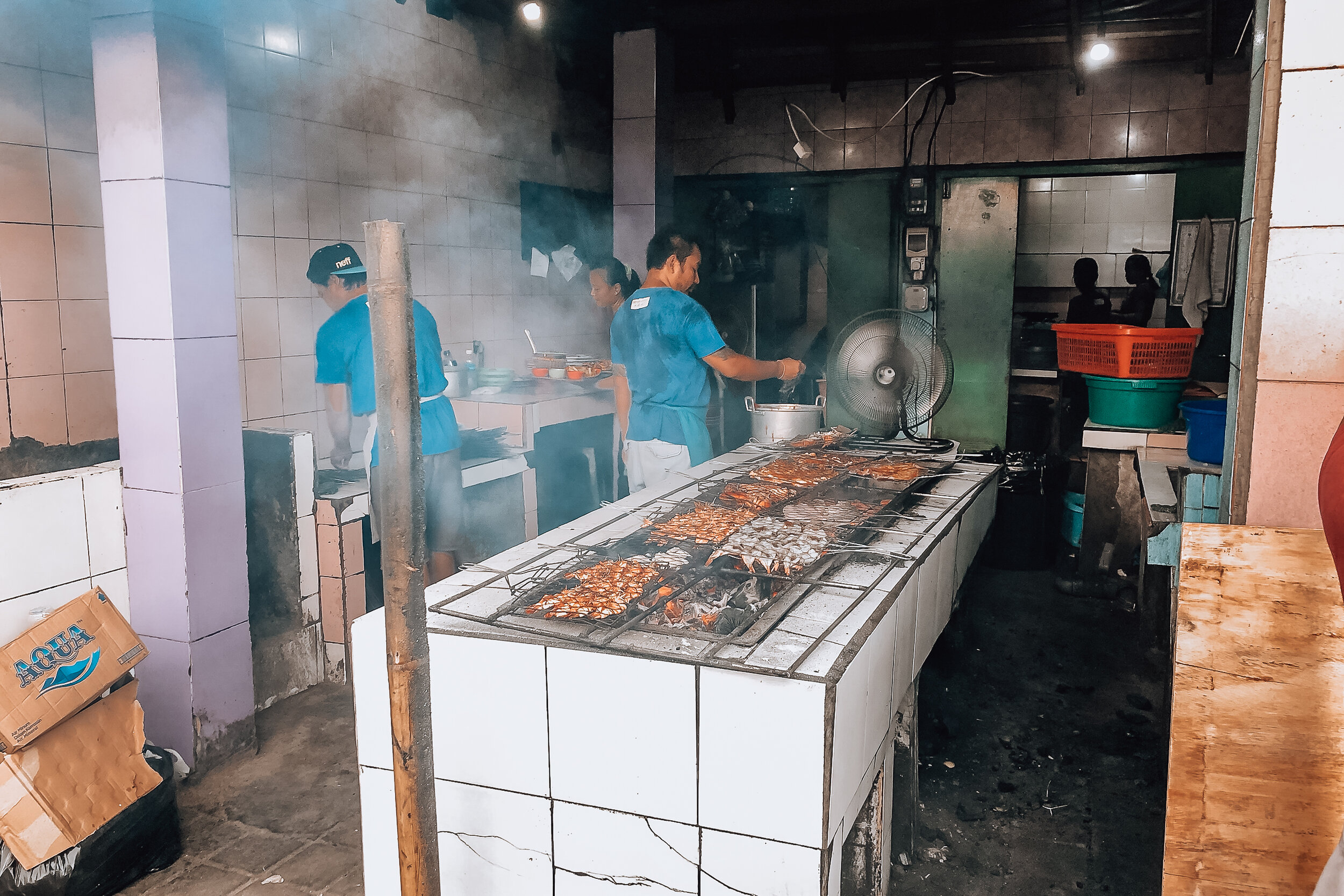
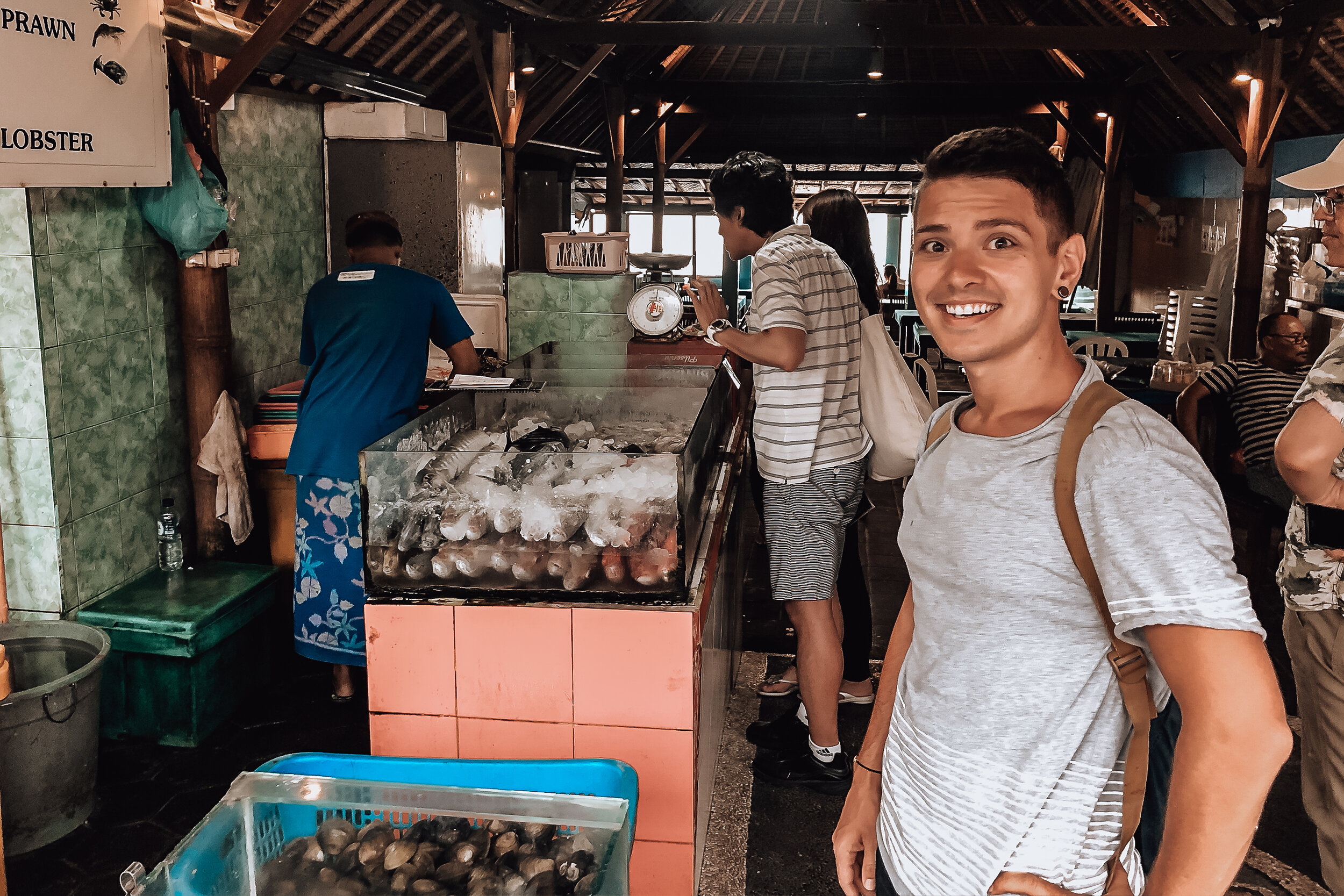
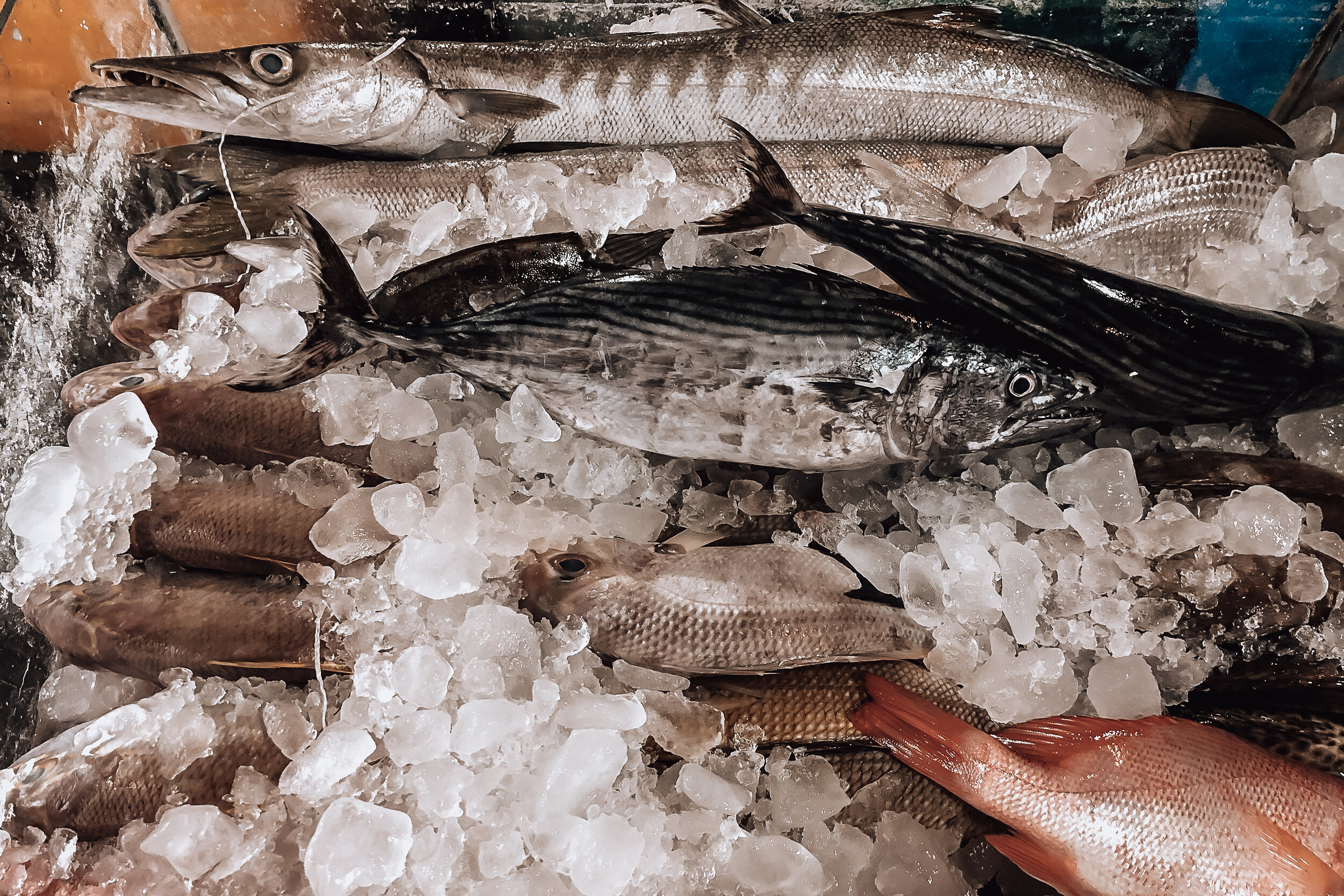
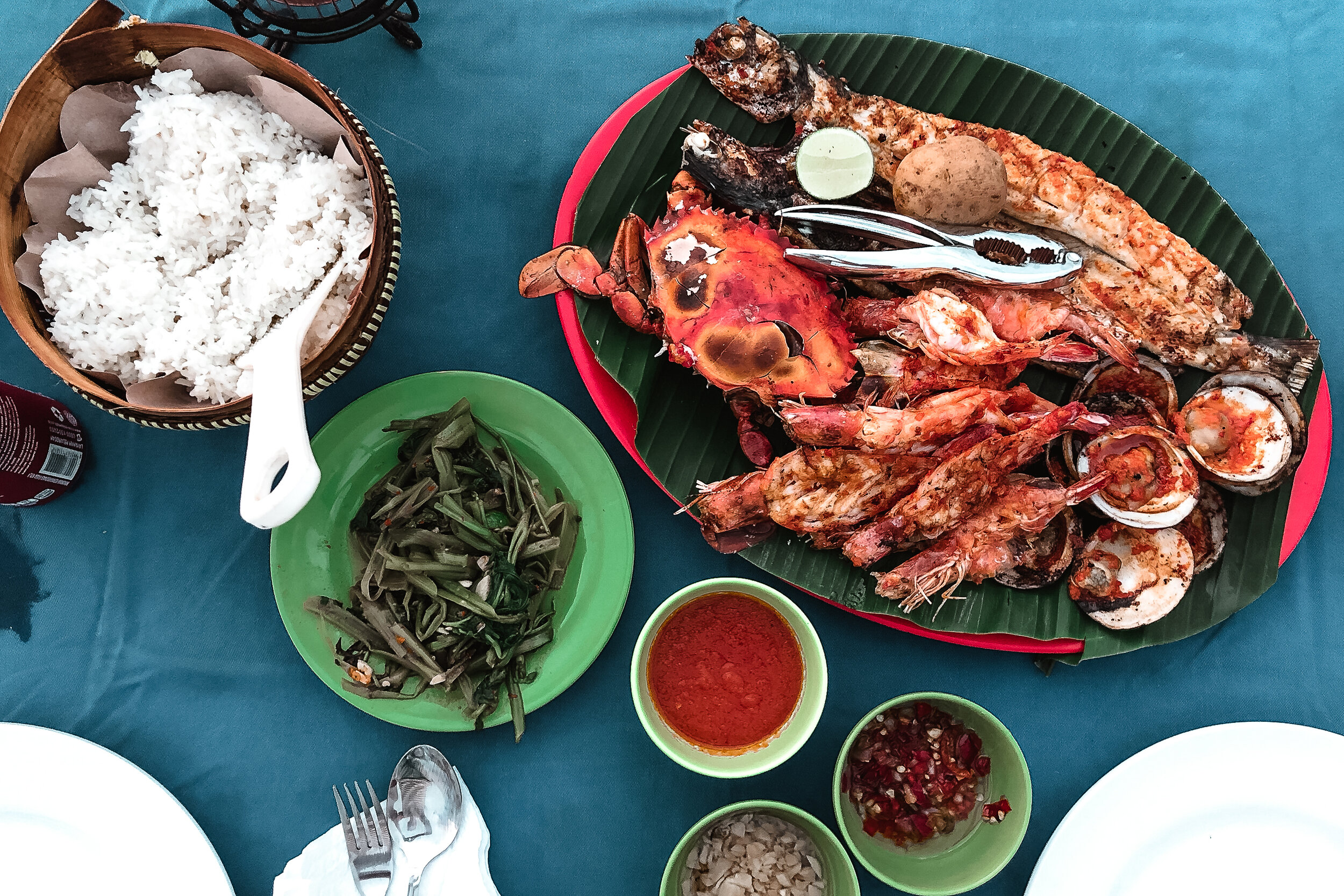
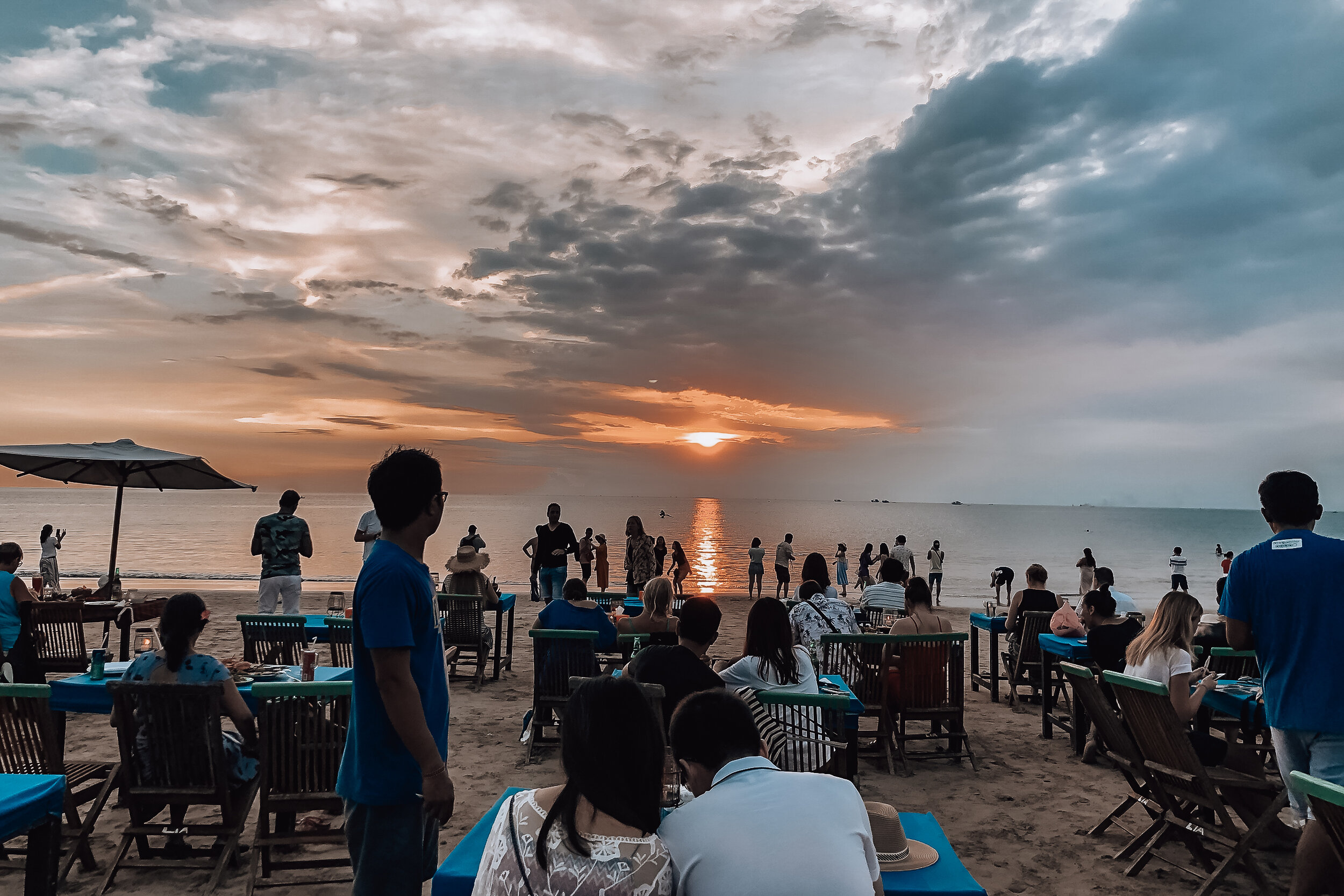
Eat Jimbaran Seafood. Jimbaran Beach is home to a finishing village lined with restaurants and sheds grilling all kinds of freshly caught and live seafood. The seafood is cooked over large grills burning coconut husks and fanned by the chefs. The selection is vast and ranges between vendors. We shared a platter of whole crab, prawn, barracuda and oysters plated on a banana leaf.
The best options are towards the south end. The seafood is cheaper, you can dine directly on the beach and the vibes are much better. We ate here during our last night in Bali, watching the sunset one last time over the Indian Ocean while being serenaded by an international mariachi band that could sing songs in your language based on your nationality. Avoid the higher-end restaurants towards the north, they’re tourist traps.
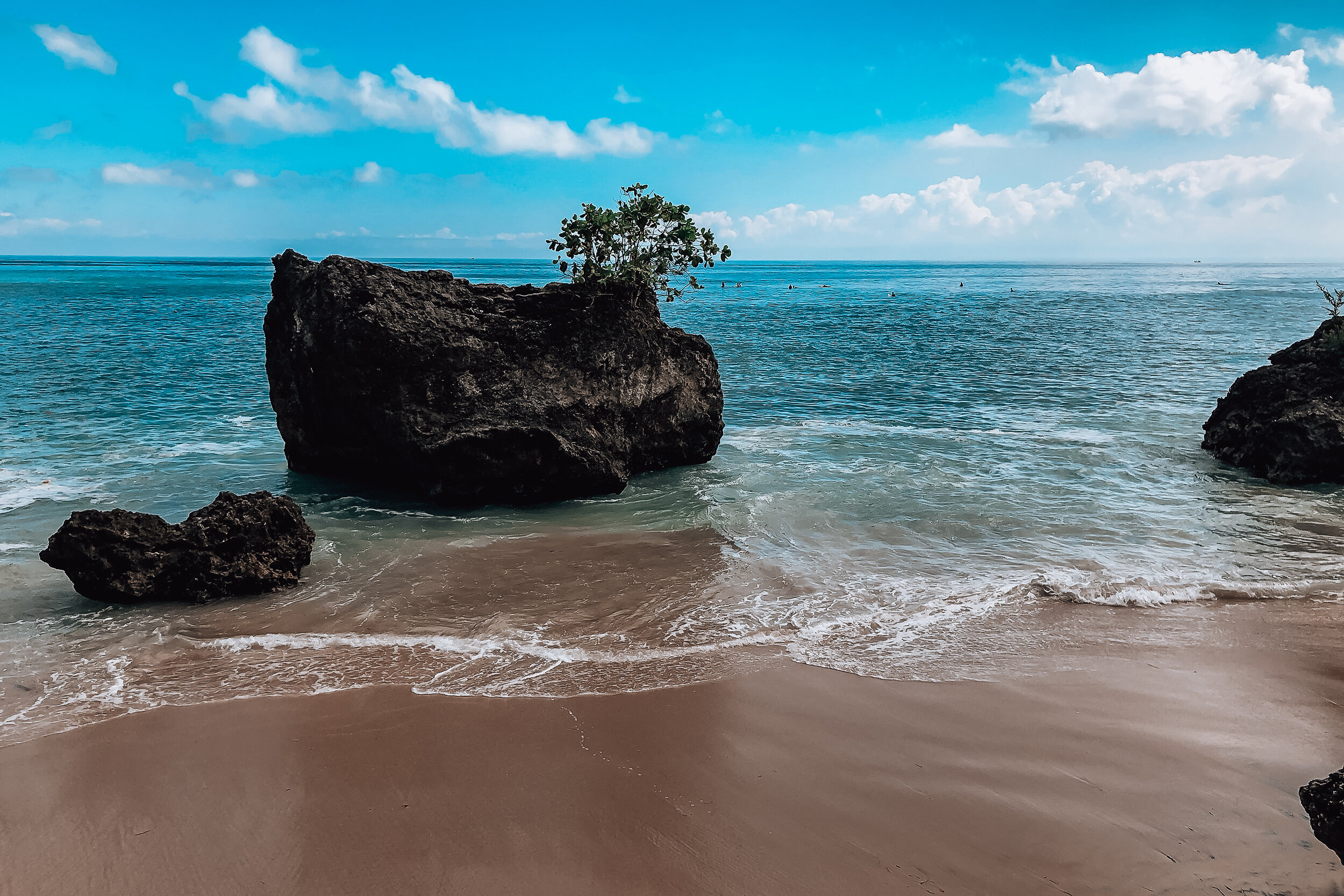
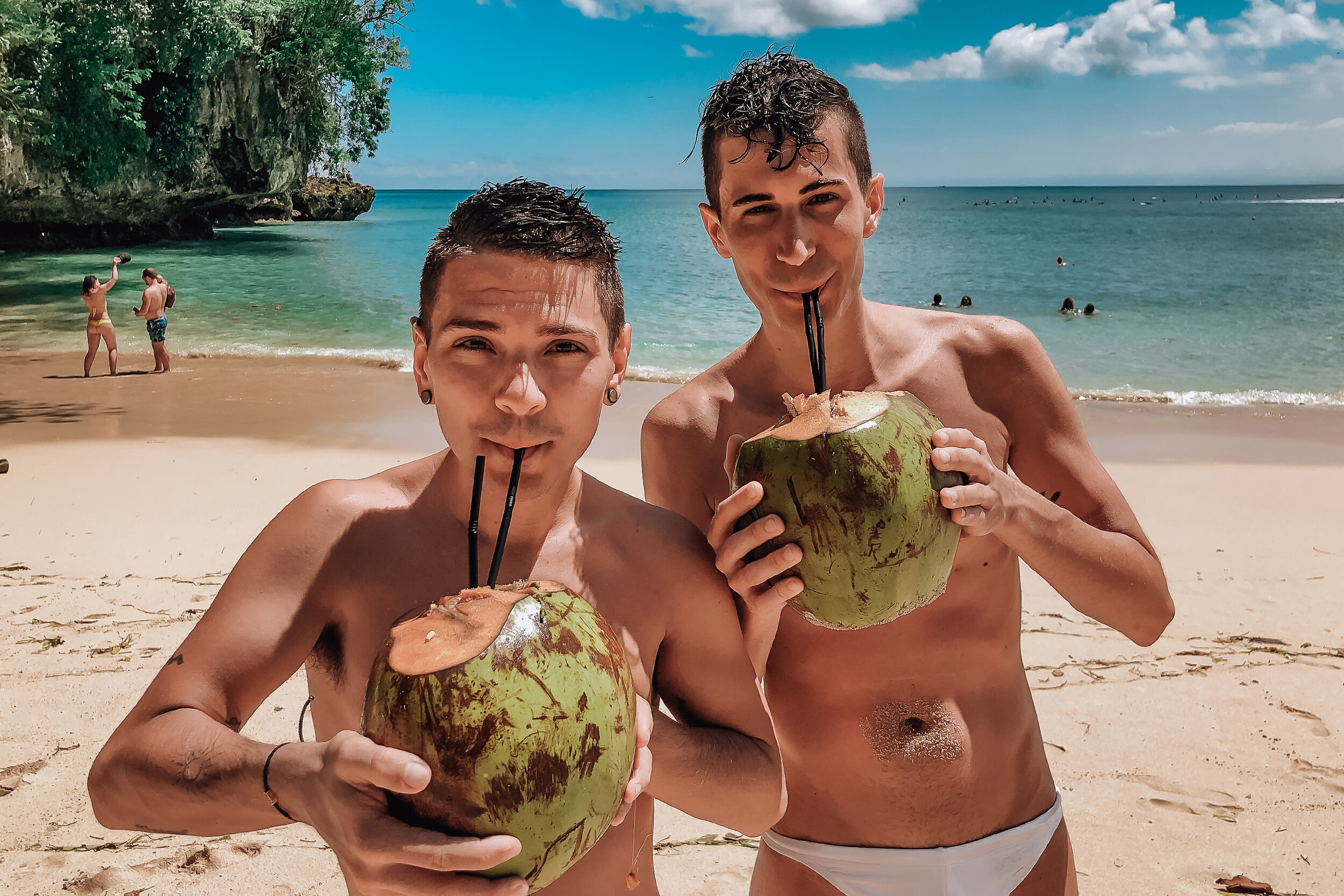
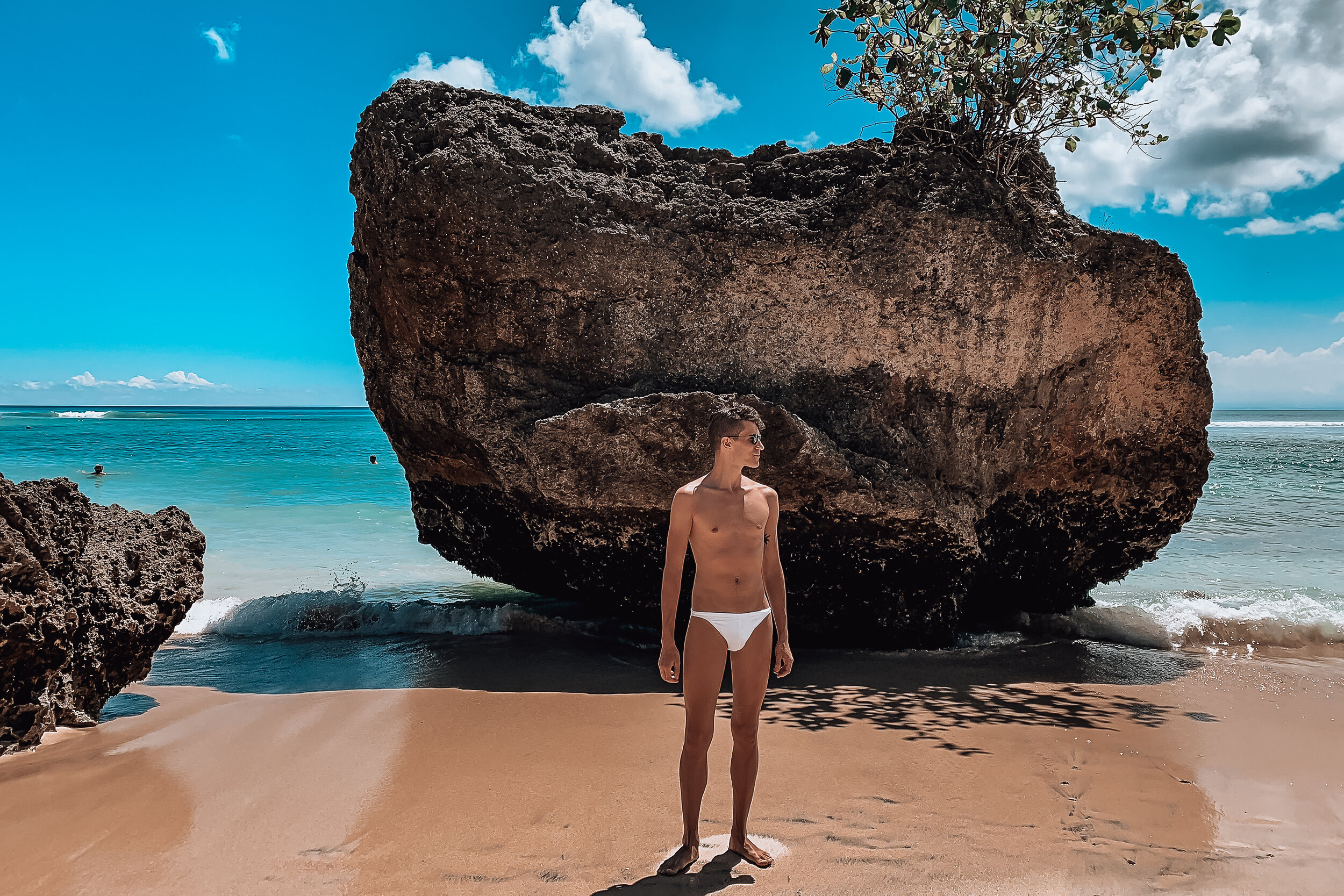
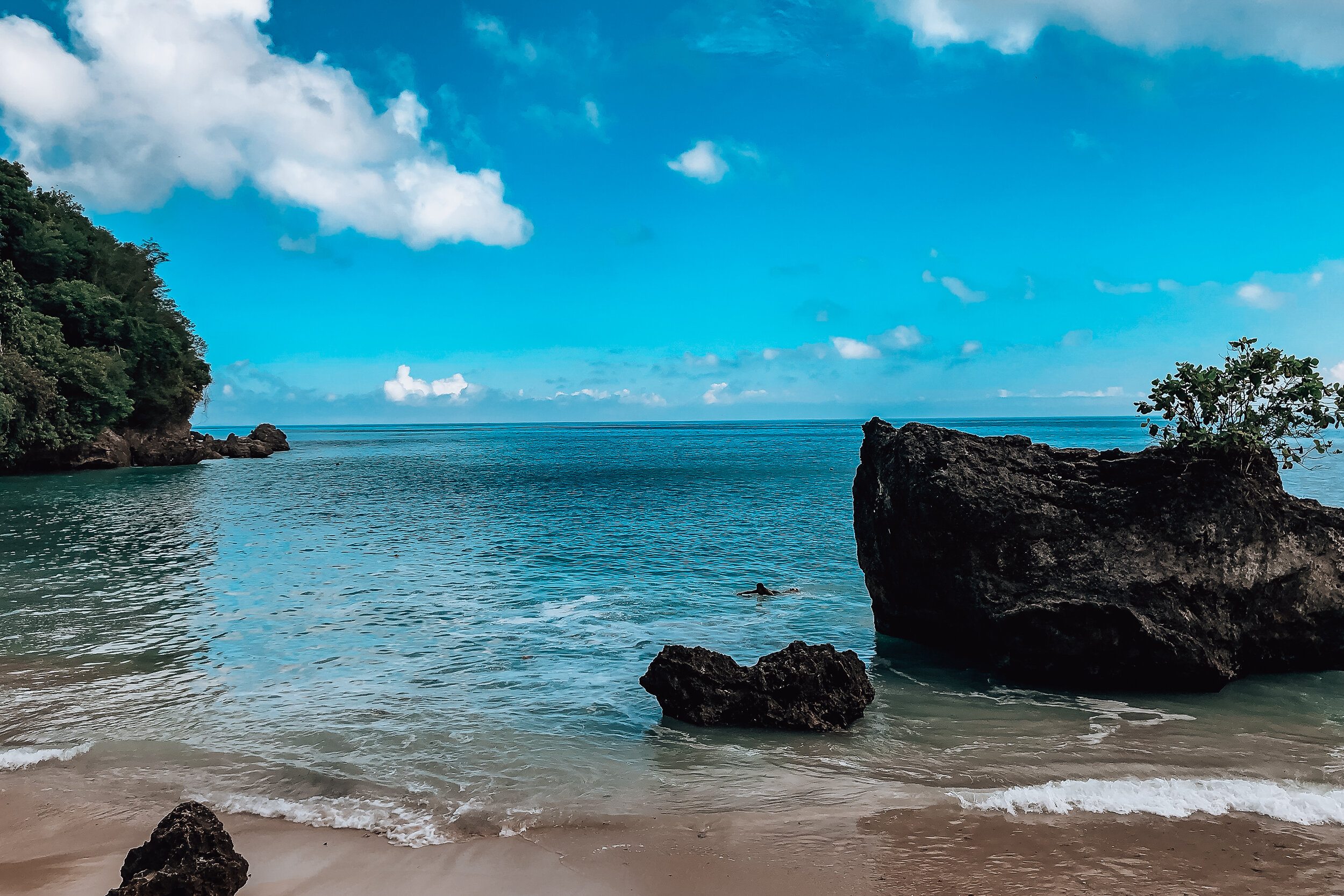
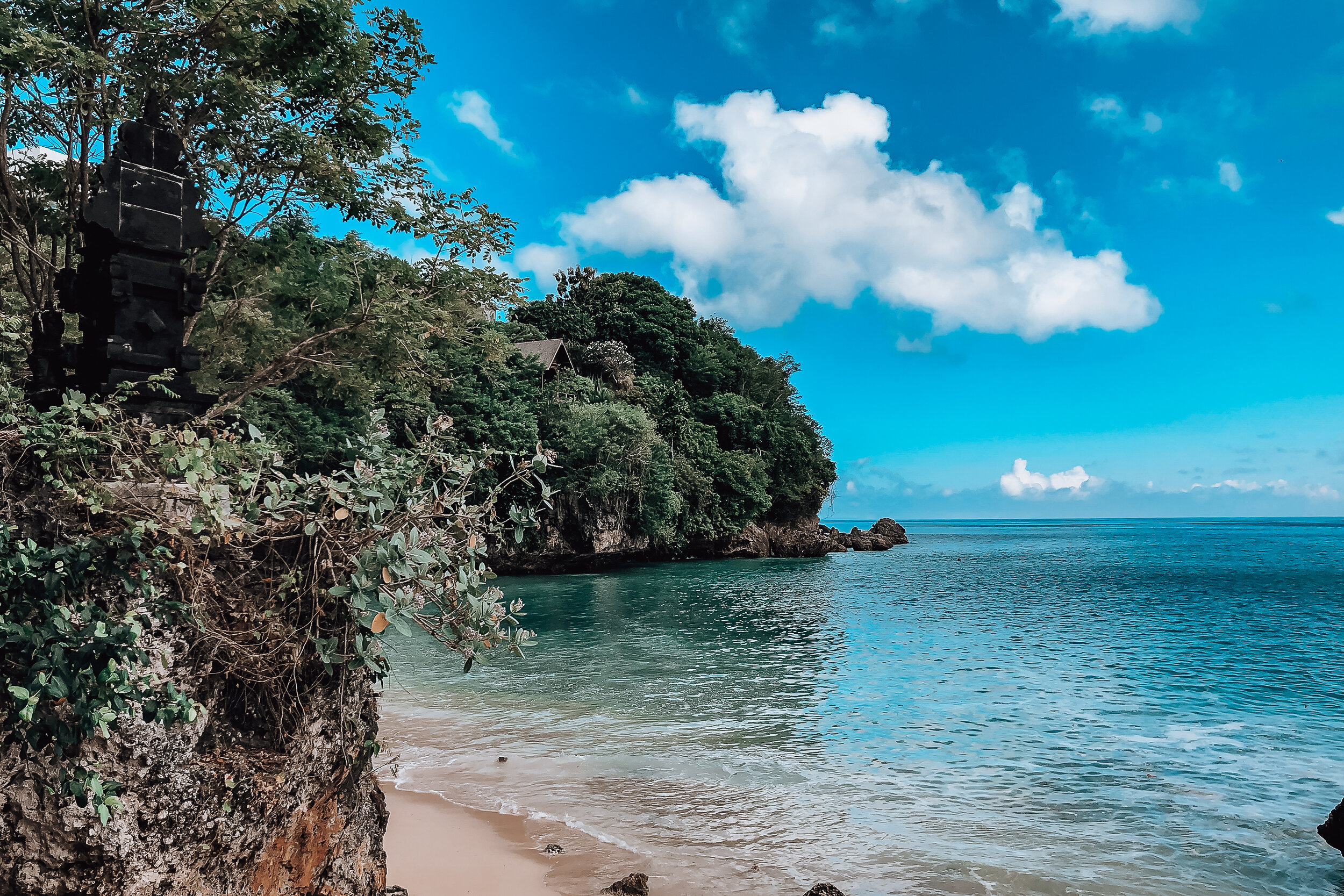
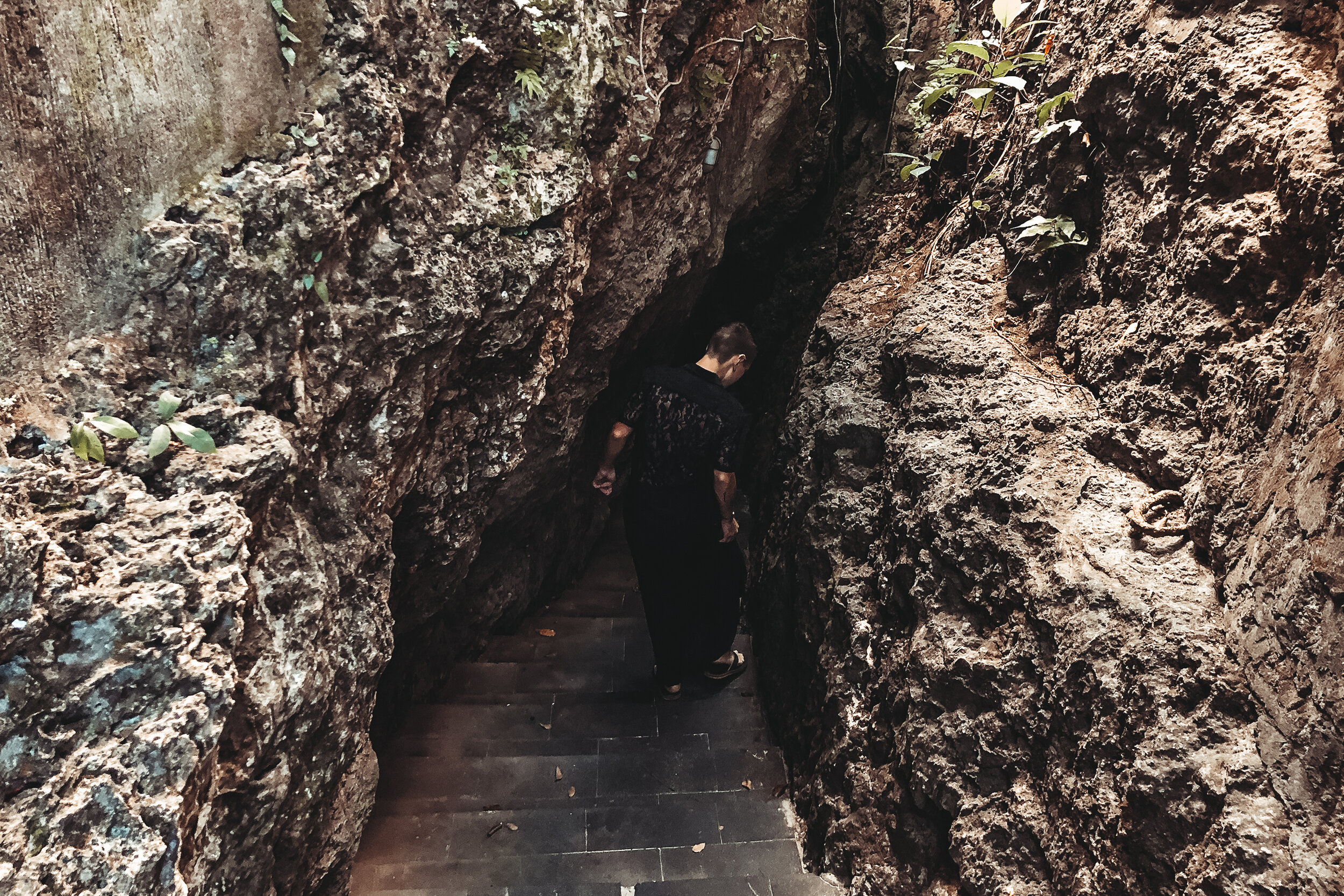
Padang Padang Beach. We visited a lot of beaches in Bali but this was one of our favorites! The small beach is nestled in a cove with protection from ocean currents making it easily swimmable.
It’s accessible via a set of stairs built within the crevice of the cliff above. There is an entrance fee of 10K Rp (less than $1 USD) Watch out for monkeys on steps and near the tree line along the beach. Like in the monkey forest, they’re mischievous and will try to snatch your belongings.
The beach is great for sunbathing with little shade, though you can rent an umbrella for 100K Rp ($7 USD). There are a number of warungs to grab a meal and vendors selling fresh coconuts to drink out of. Afterwards, they’ll chop them open for you to eat the meat from.
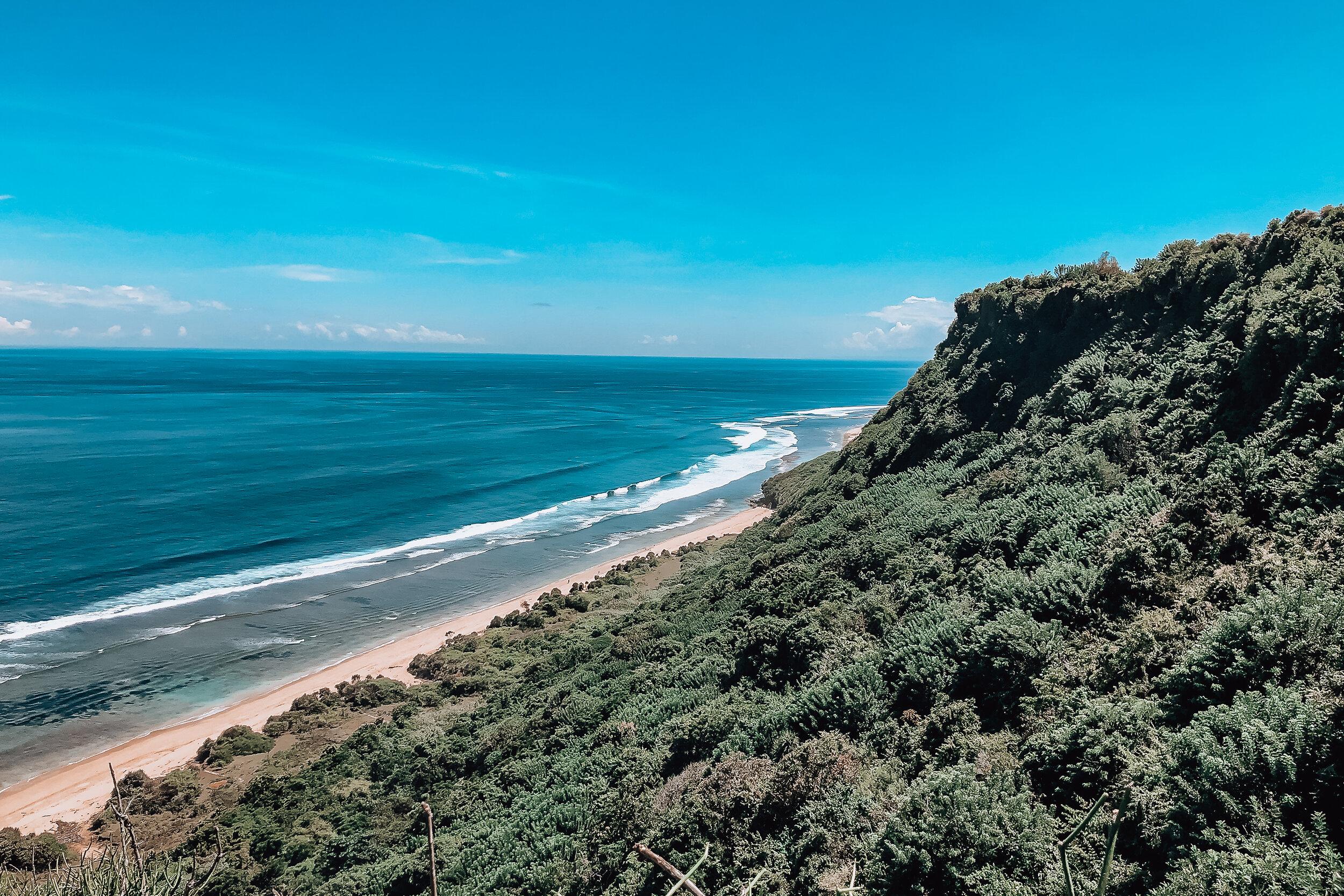
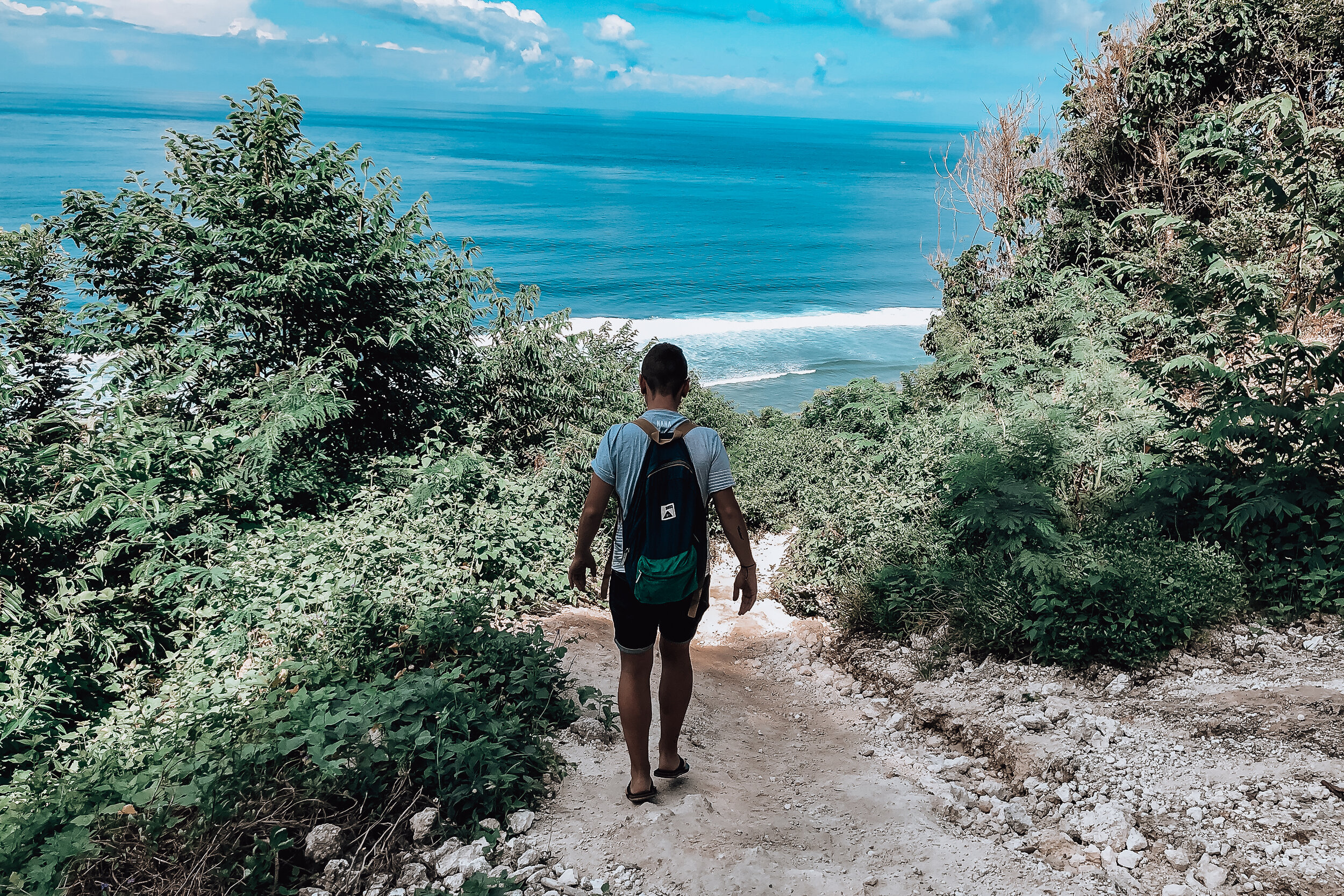
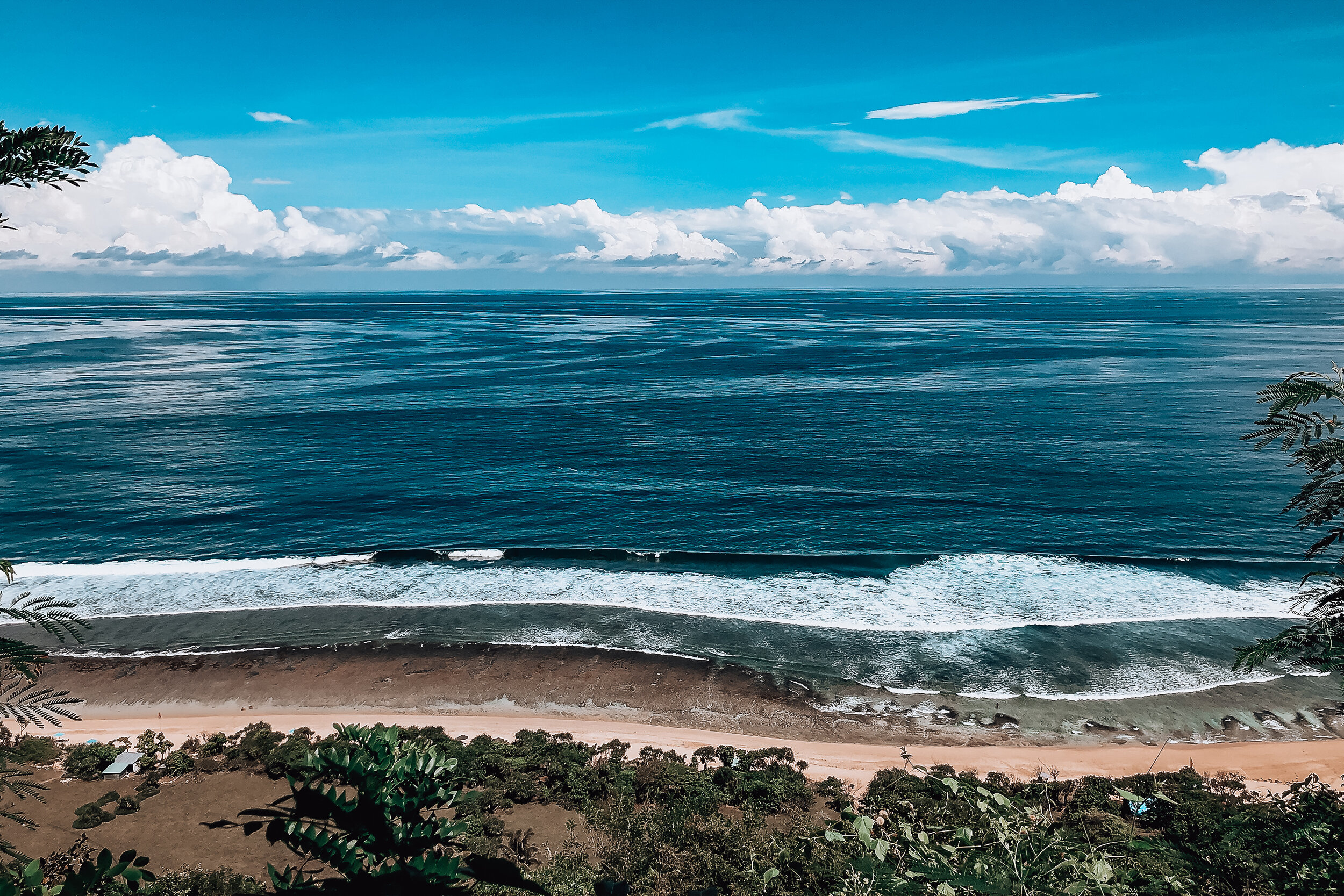
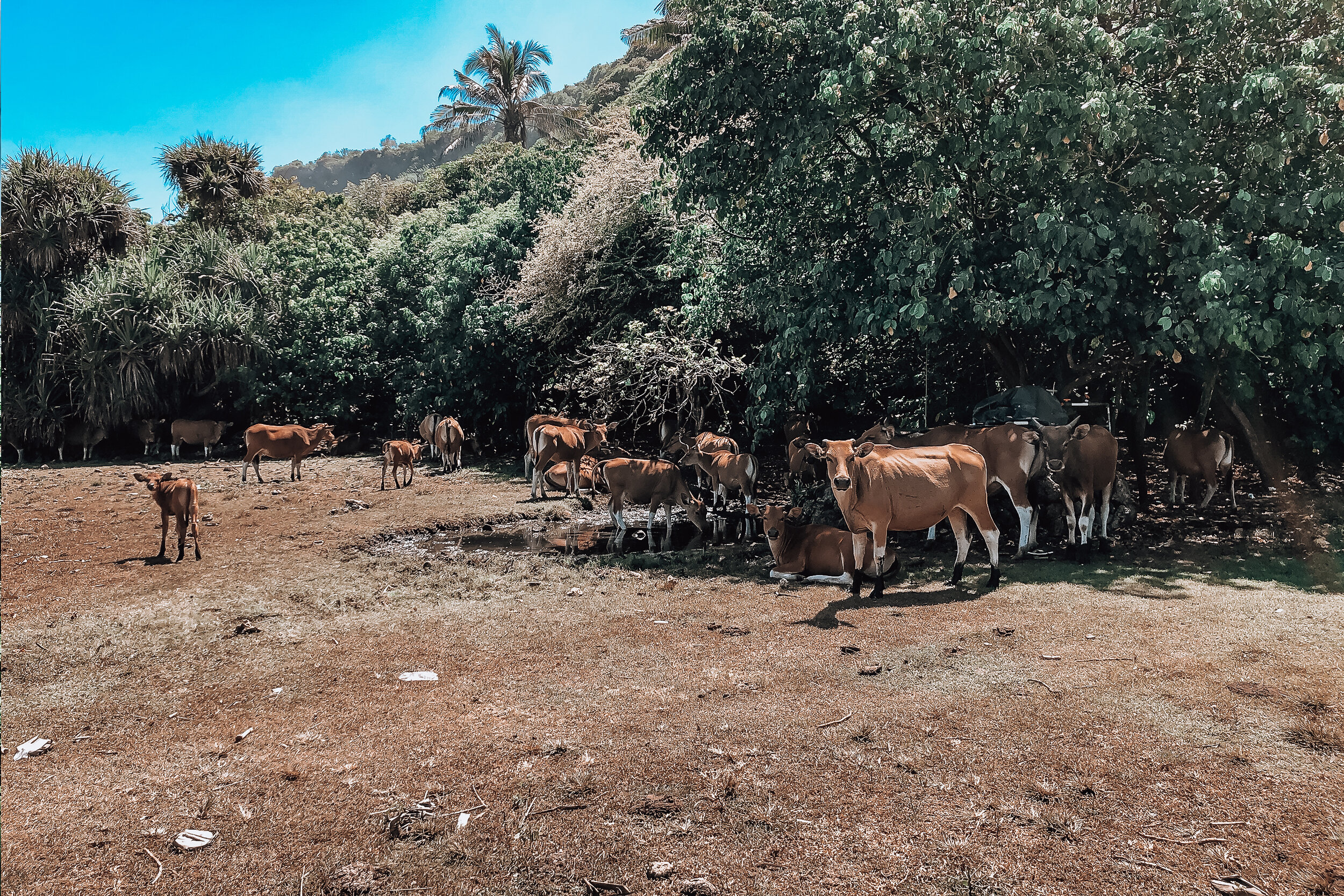
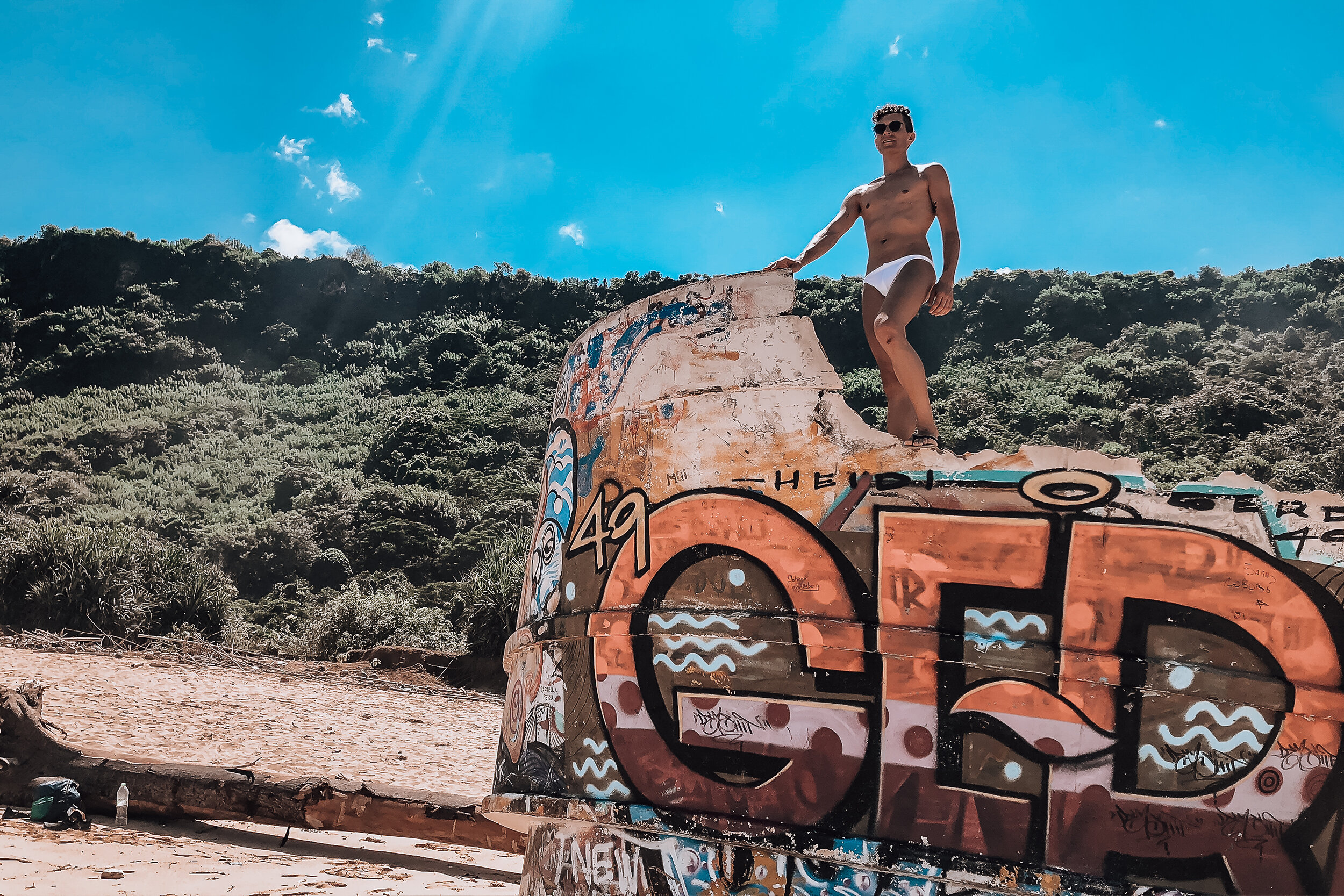
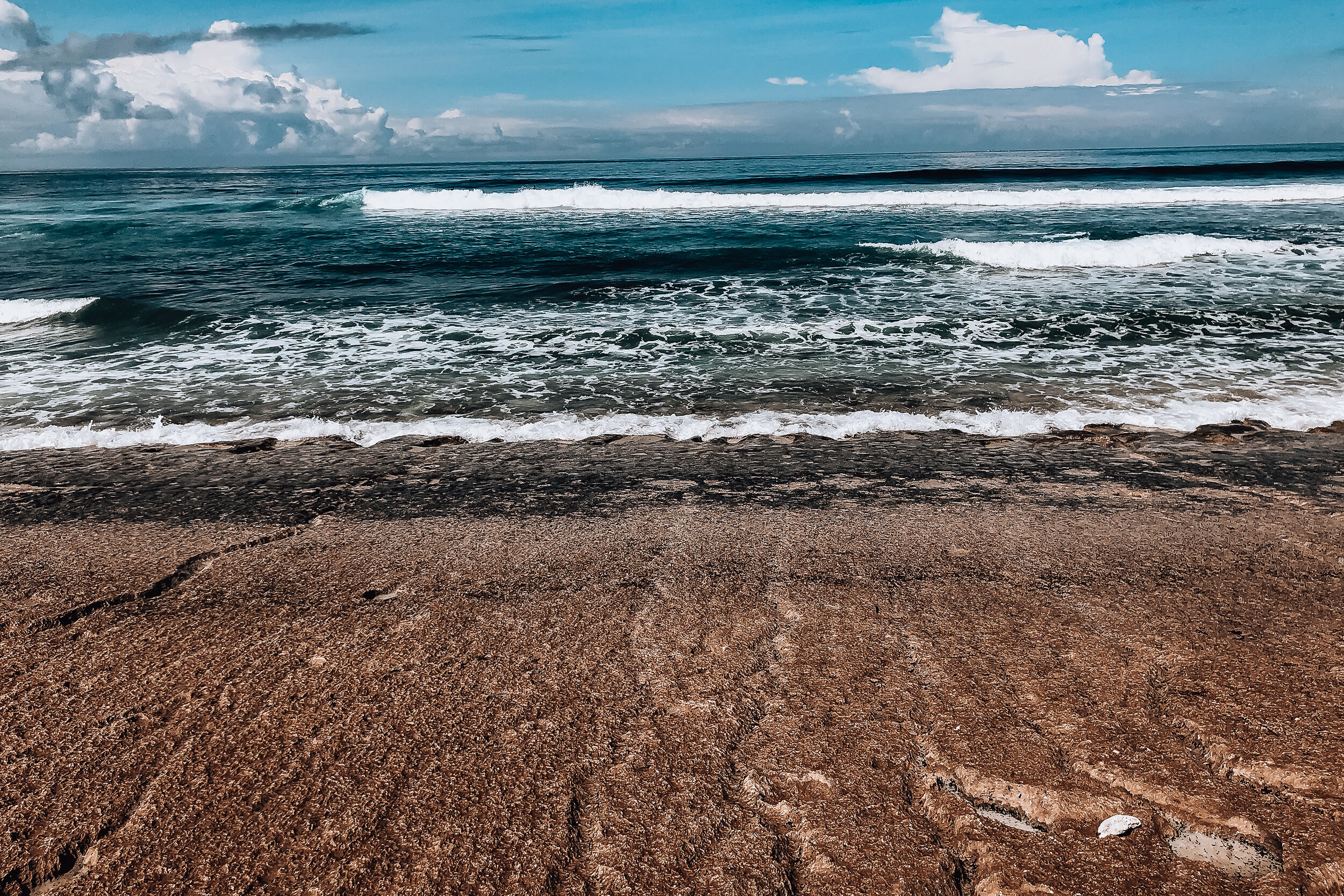
Nyang Nyang Beach
This remote beach takes a little effort to reach. If you enjoy hiking followed by a reward, this is the perfect spot for you! The beach is divided into 2 sections, the East and West sides. There is also a nearby paragliding camp offering flights from above the beaches.
East Side. The sandy beach and shallow waters are perfect for swimming and lounging in. There are also a couple of warungs selling beverages, snacks and offering a shaded retreat from the sun. The most notable sight on the beach is the graffitied remains of a washed up shipwreck. The beach is accessible via a lush cliffside trail behind the Villa Plenilunino. There are a number of warungs along the trail to stop for a meal and drink. Once you reach the bottom, you’ll have to pass through a grassy field with a heard of grazing cows before reaching the beach. It’s best to avoid getting close to or startling them.
West Side. This beach is perfect if you want total seclusion. There are no warungs, so bring your own food and water. The sandy shoreline transitions to bedrock at the water. This combined with the waves and currents make it dangerous for swimming. Though the seclusion and sound of crashing waves makes this beach feel like your own personal desert island. The beach is accessible via a steep gravel roadway just beyond the parking lot adjacent to Nyang Nyang Warung.
Before You Go. Plan the section you want to visit. Both sides are separated by a 500ft stretch of jagged rocks covered in large crabs beneath an unstable the cliff. It’s dangerous and near impossible to cross. You do not want to get stuck here when the high tide comes in. Bring a bag to collect plastic. Due to the beach’s southern most point, the ocean currents often litter the shoreline in plastic waste.
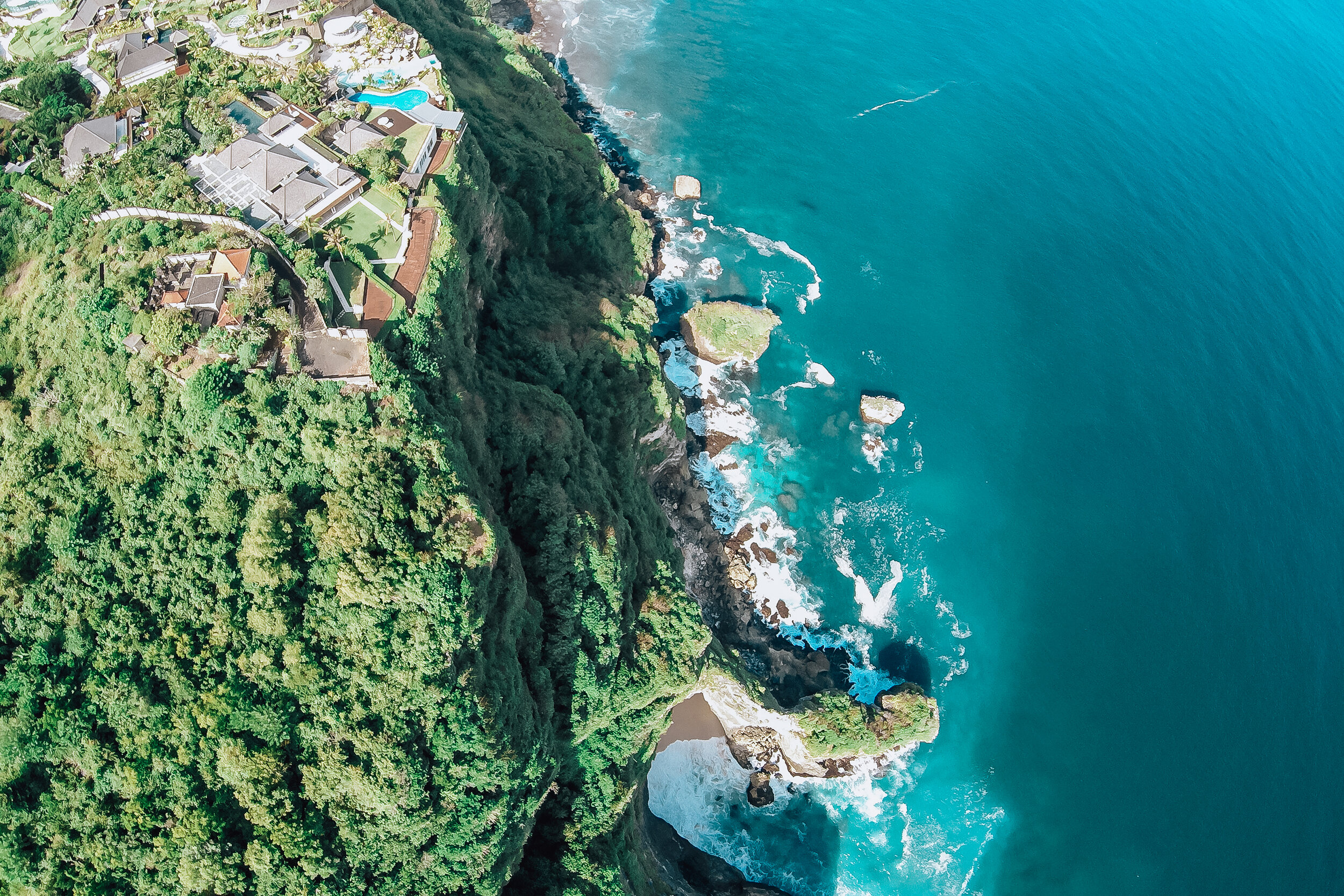
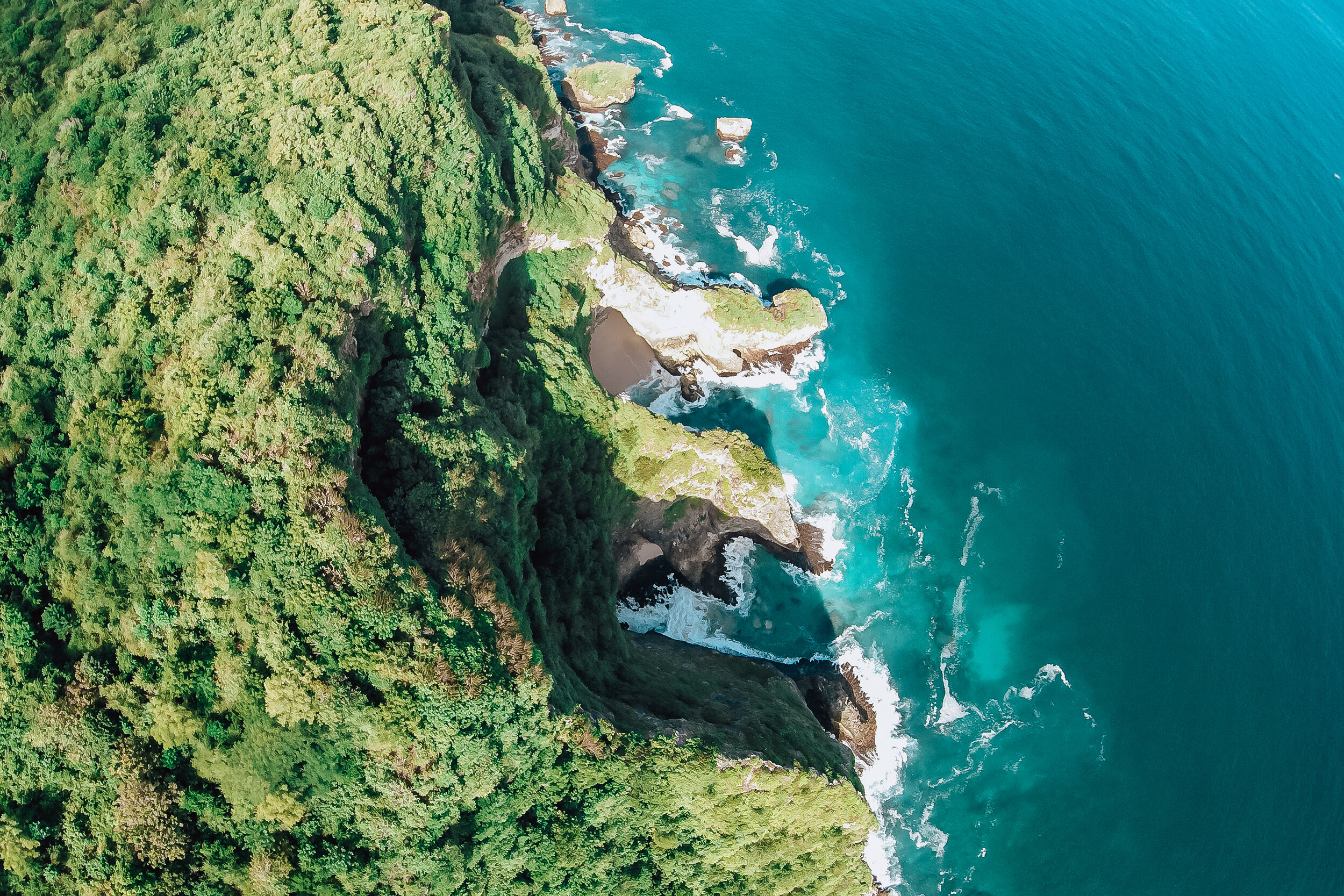
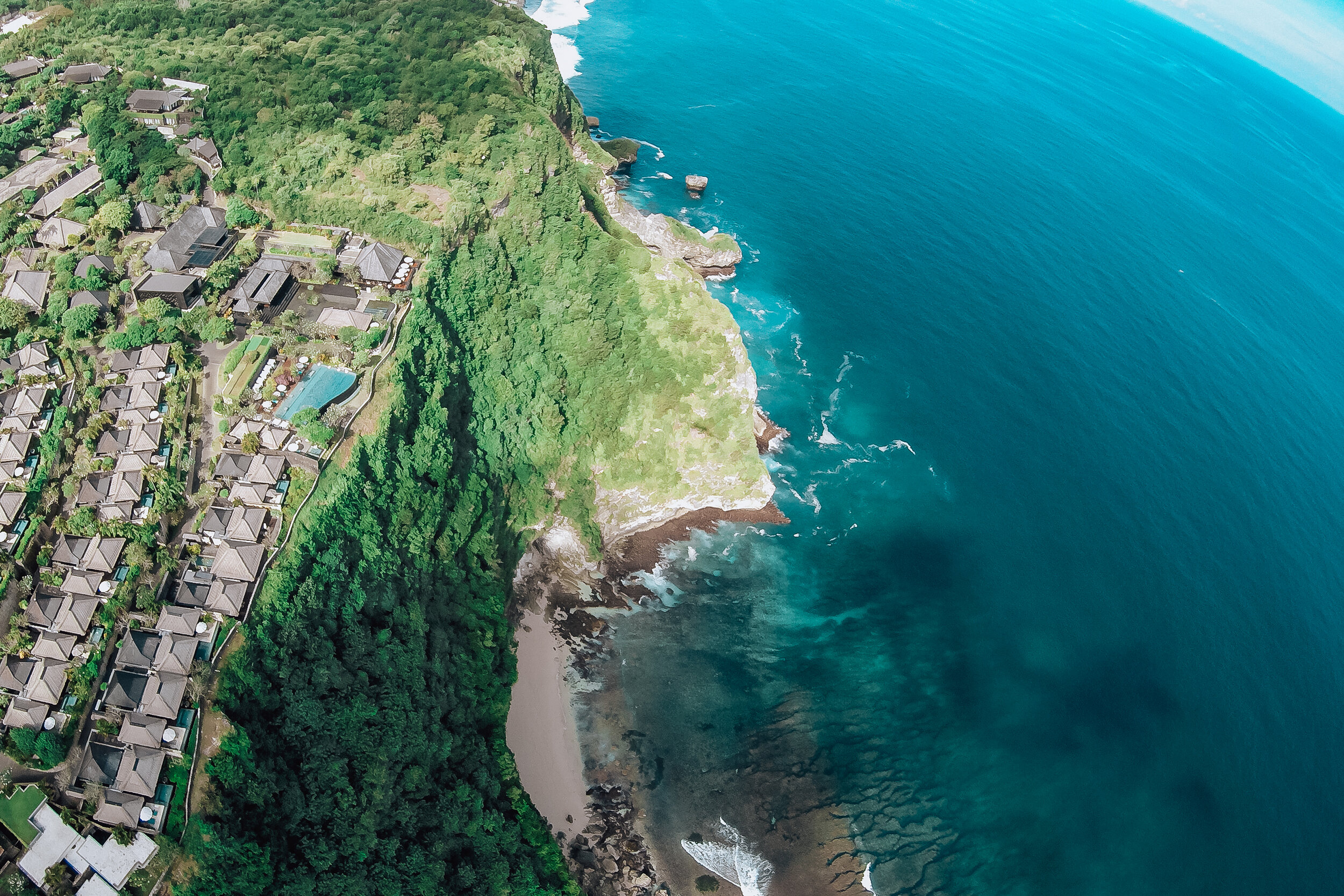
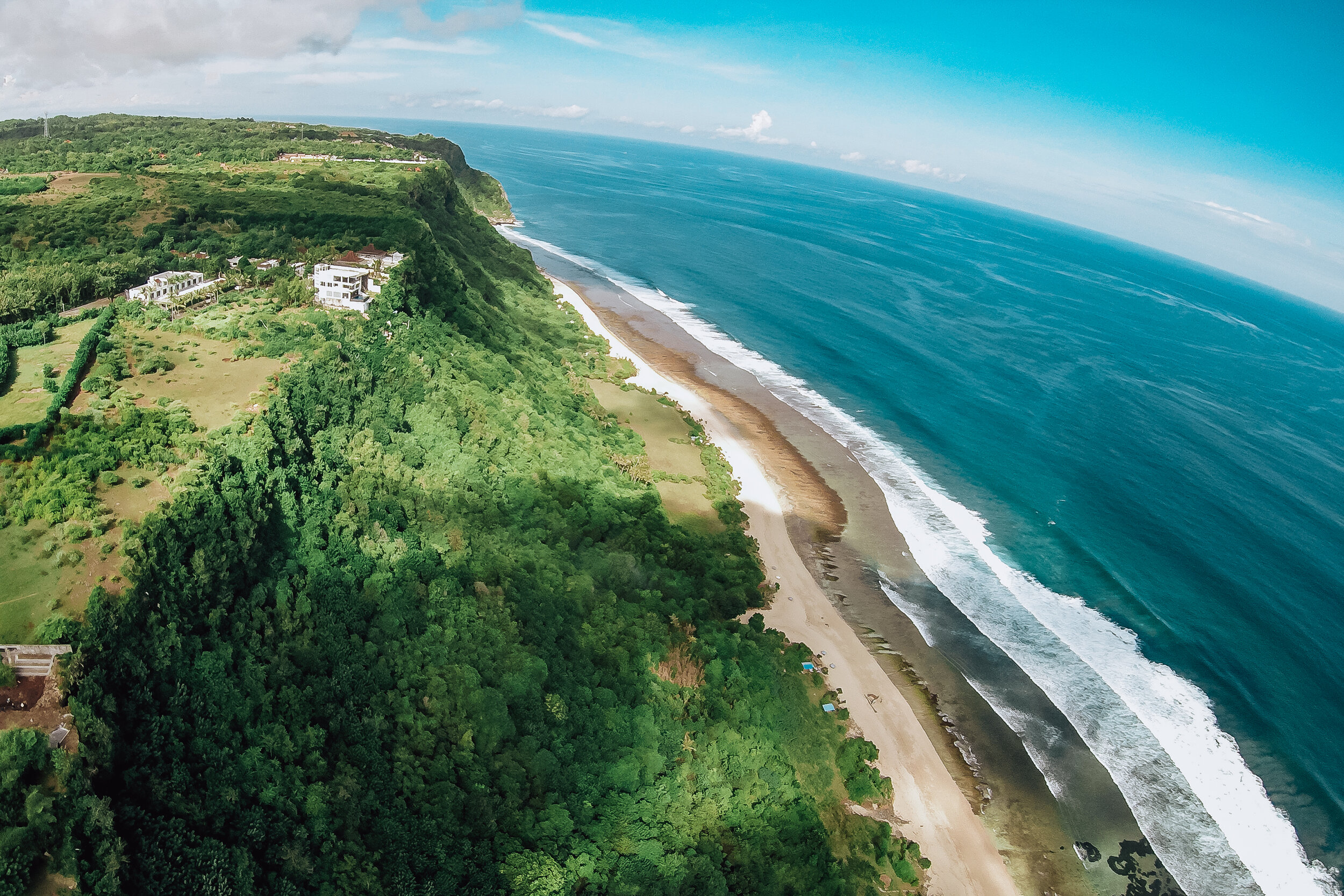
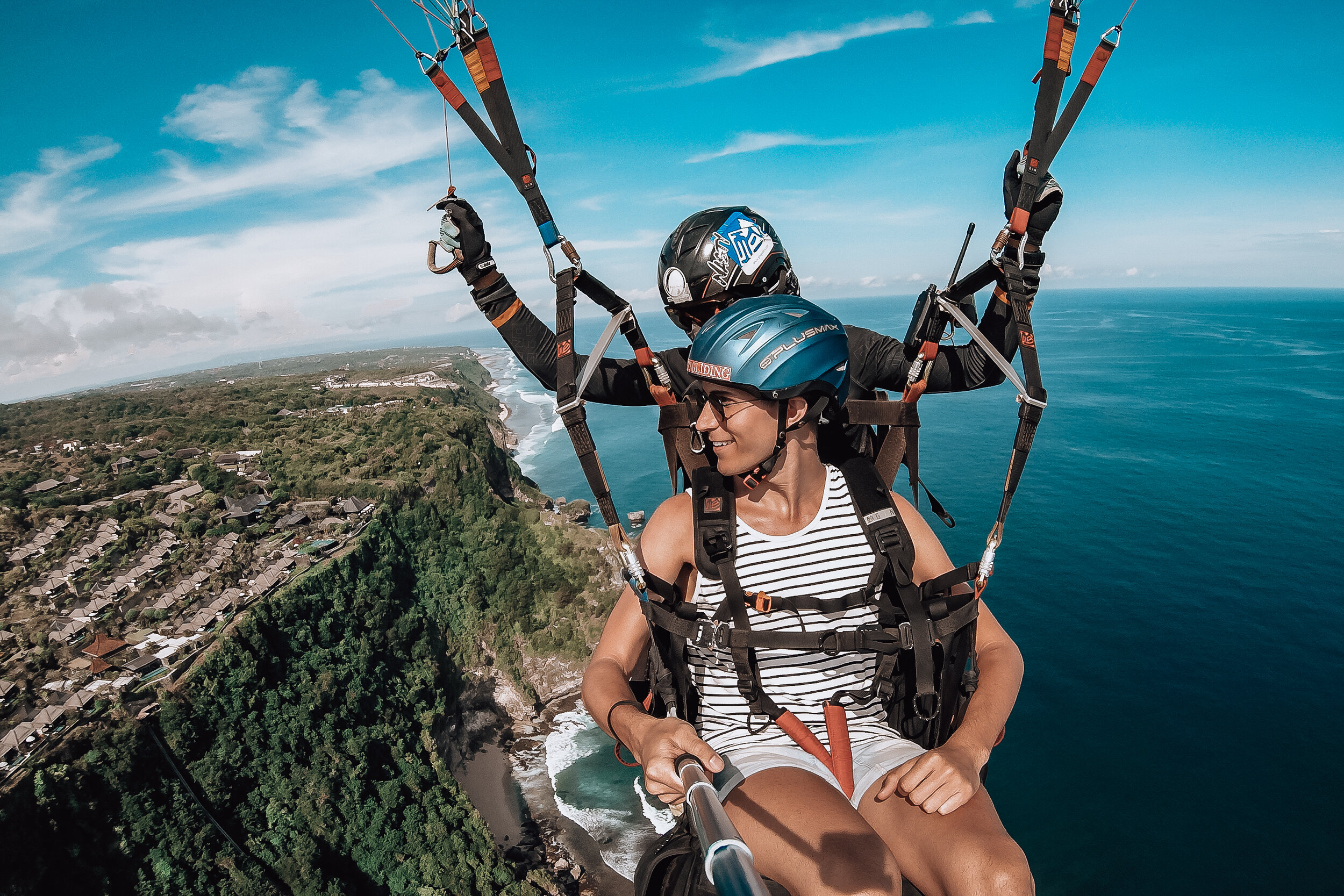
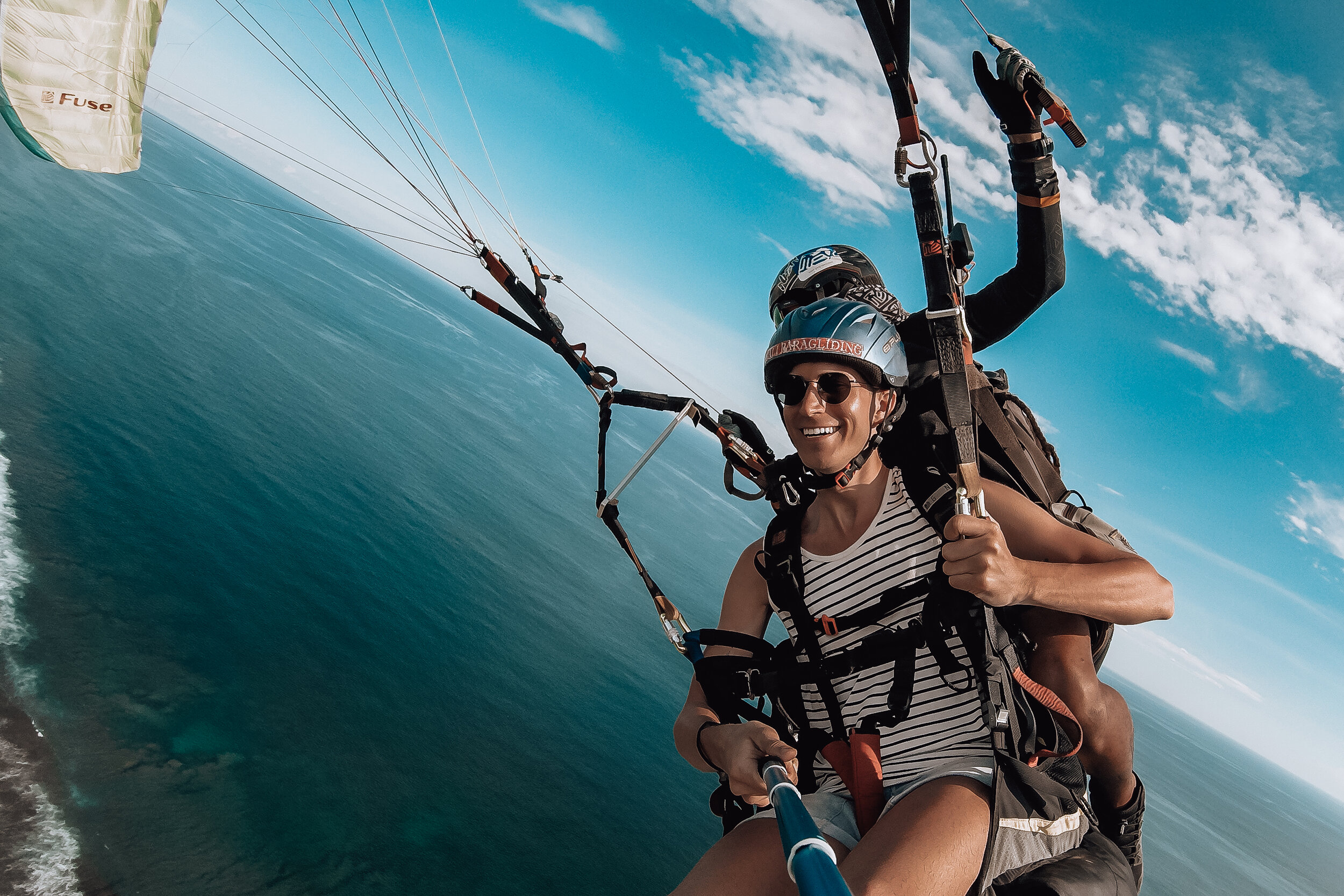
Nyang Nyang Paragliding. The southern winds hitting Nyang Nyang’s cliff make it an ideal spot for paragliding. We took a 20 minute tandem flight that soared several hundred feet above the coast. If the conditions are right, the pilot will perform some aerobatics such as spiraling and spinning the parachute. The cost is 900K Rp ($63.50) including go-pro photos and videos. Be ready to go as soon as you arrive. It was a little terrifying but within minutes, we were strapped in and lifted into the air. Opposite of this, you may have to wait if the winds are too weak.
Good to Know
Currency & Pricing
You can easily be a millionaire in Bali. 1,000,000 Rp converts to about $71 USD.
Money is qualified in the thousands. Many restaurants and businesses will drop the extra zeros on menus and price tags. For instance something costing 56,000 Rp may be listed as 56.
Carry a lot of smaller bills (5K, 10k and 20K) with you for donations and small fees.
Tipping is usually included in the bill under service. Anything extra is not expected.
Many beach clubs have entrance fees to reserve a table which is given back as a credit for food and drinks.
When exchanging cash or cards, use both hands out of respect.
Safety & Awareness
Bali is generally a safe place to travel too.
The biggest dangers in Bali are traffic and natural disasters.
You need to be alert and careful if driving a scooter or crossing a road.
Bali is a volcanic island and prone to earthquakes. The safest thing to do if one happens is to move to an open area. If you’re in a building, move to the center of a street. If you’re hiking or under palm trees, move to a clearing to avoid falling rocks and coconuts. Always cover your head.
After an earthquake, it’s best to leave the beaches and stay alert for tsunami warnings.
Move to higher ground if a tsunami warning is issued. Most areas have coastal evacuation routes.
Be aware of currents and waves while in the water. Most beaches will post warnings.
Language & Phrases
Bahasa Indonesian is the official language in Bali however many people know English.
People will often introduce themselves and bow their head when meeting you. You should reciprocate the response and gesture.
Common greetings we heard, especially from strangers or passersby are:
Hi. Where are you going?
Hi. Where are you from?
These greetings are often said to start conversation.
Common phrases:
Sukseme = Thank You
Sama Sama = You’re Welcome
Selamat Pagi = Good Morning
Selamat Siang = Good Afternoon
Selamat Sore = Good Evening
LGBTQ+
Bali and The Gilis are very LGBTQ+ friendly compared to the rest of Indonesia where being gay is punishable under the nation’s strict laws. Though it’s best to be cautious you likely will not run into any trouble, especially in the more westernized neighborhoods such as Canggu or Seminyak. The latter is home to pockets of LGBTQ+ nightlife and businesses.
If we had more time…
Like we said earlier on, there are near endless things to do and see in Bali. This guide should attest to that ;) Bali is definitely one of those destinations that you’ll want to return too! When we do, these are a number of the things we’re planing to seek out.
Nusa Islands
Full day tour visiting Manta Bay to snorkel and swim with the Manta Rays.
Hiked to Kelingking Beach on Nusa Penida. The beach is famous for its T-rex shaped peninsula and beach during low tide.
Cliff Diving on Nusa Ceningan and Nusa Lembongan
West Bali
Roadtrip - Drive west and explore the coastal and jungle towns
West Bali Park - A largely untouched wildlife refuge and jungle.
The Gilis
Spent more time exploring Gili Air and Gili Meno
Taken a 3 day scuba certification class at one of the diving schools then explored the further out reefs
Bukit Peninsula
Explored more cliffside beaches: Suluban, Balangan and Green Bowl.
Visited Uluwatu Temple, one of Bali’s most sacred. Perched on the island’s southern most cliff, It’s believed the Hindu gods, Brahma, Vishnu, and Shiva become here.
Ubud, Bali
Ubud is the adventurous & cultural heart of Bali. Come for the lush landscape, expansive rice terraces & temples.
Ubud
Ubud is the heart of Bali. It’s a place for all kinds adventurous activities and cultural experiences. The area is defined by its lush jungle landscape, expansive rice terraces and Hindu temples. We spent several days here and could have easily spent weeks exploring and discovering places to visit and see.
Eco Tourism
People in Ubud are physically and spiritually connected to nature. They care for their environment, eat, build and farm sustainably. This couldn’t have been any truer than at the eco-community where we stayed, New Earth Haven. Our accommodation was an eco-dome made from bamboo, canvas and thatched palm leaves. The dome was surrounded by rice fields and elevated from the ground. Separately, it had an outdoor shower and compositing toilet.
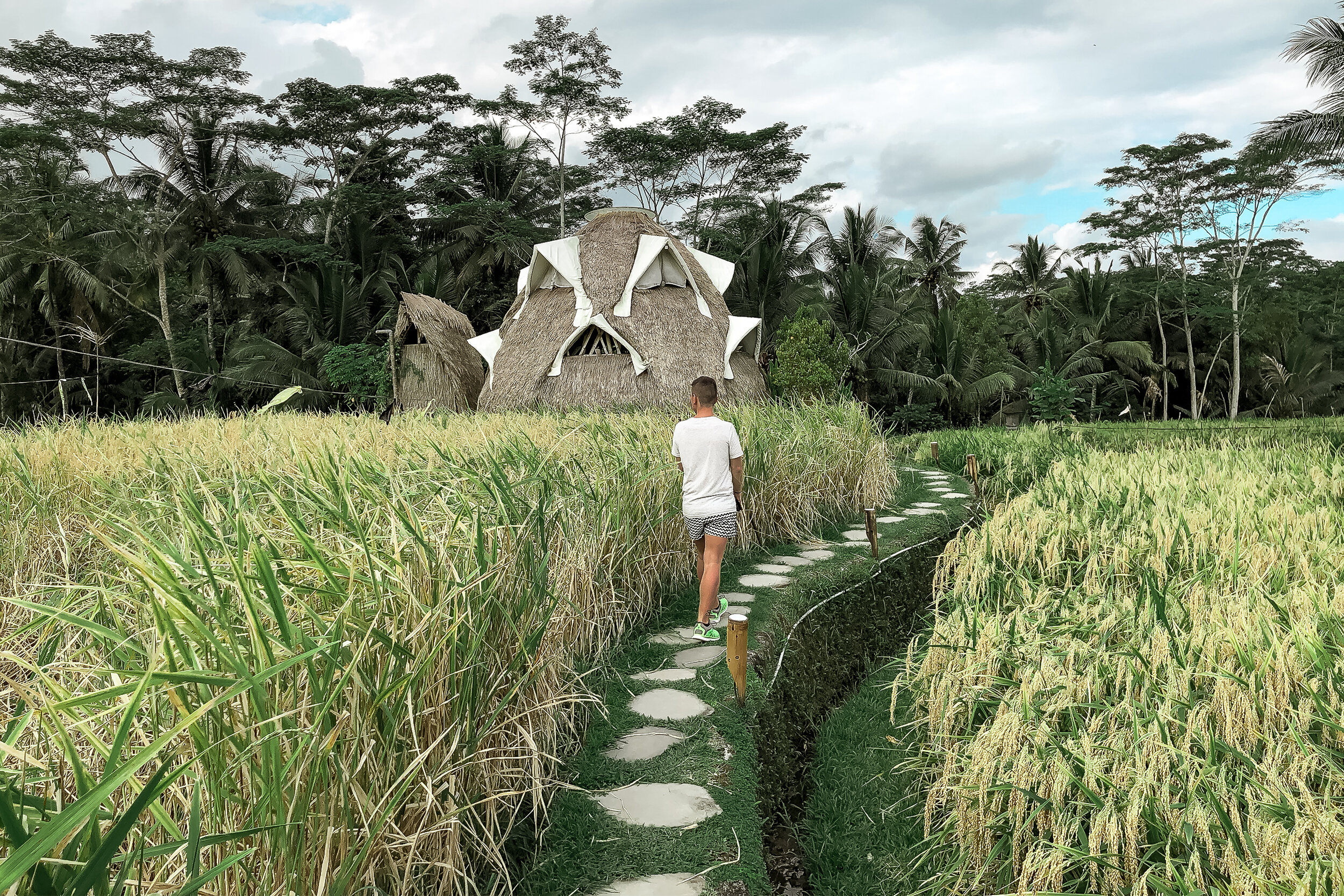
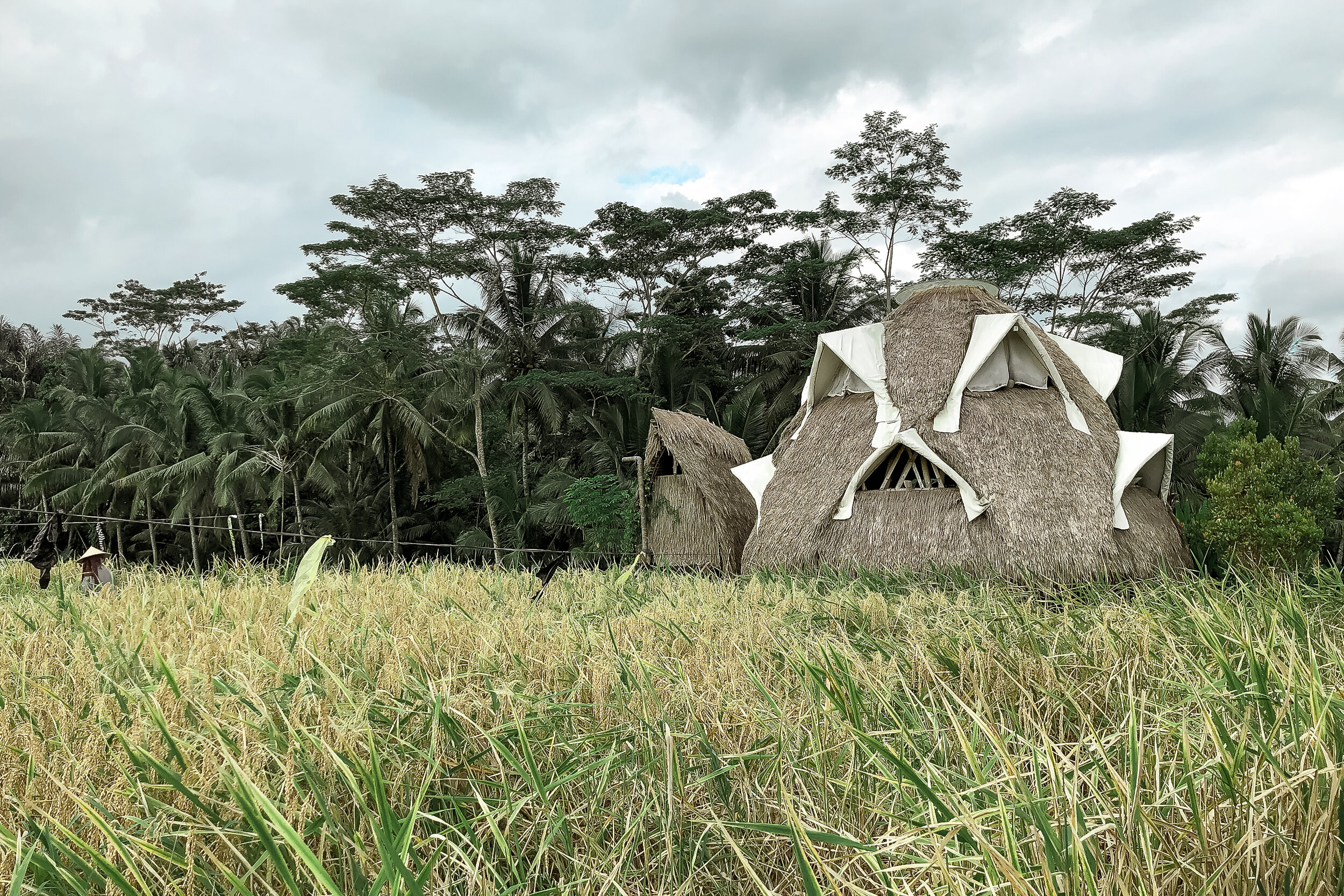
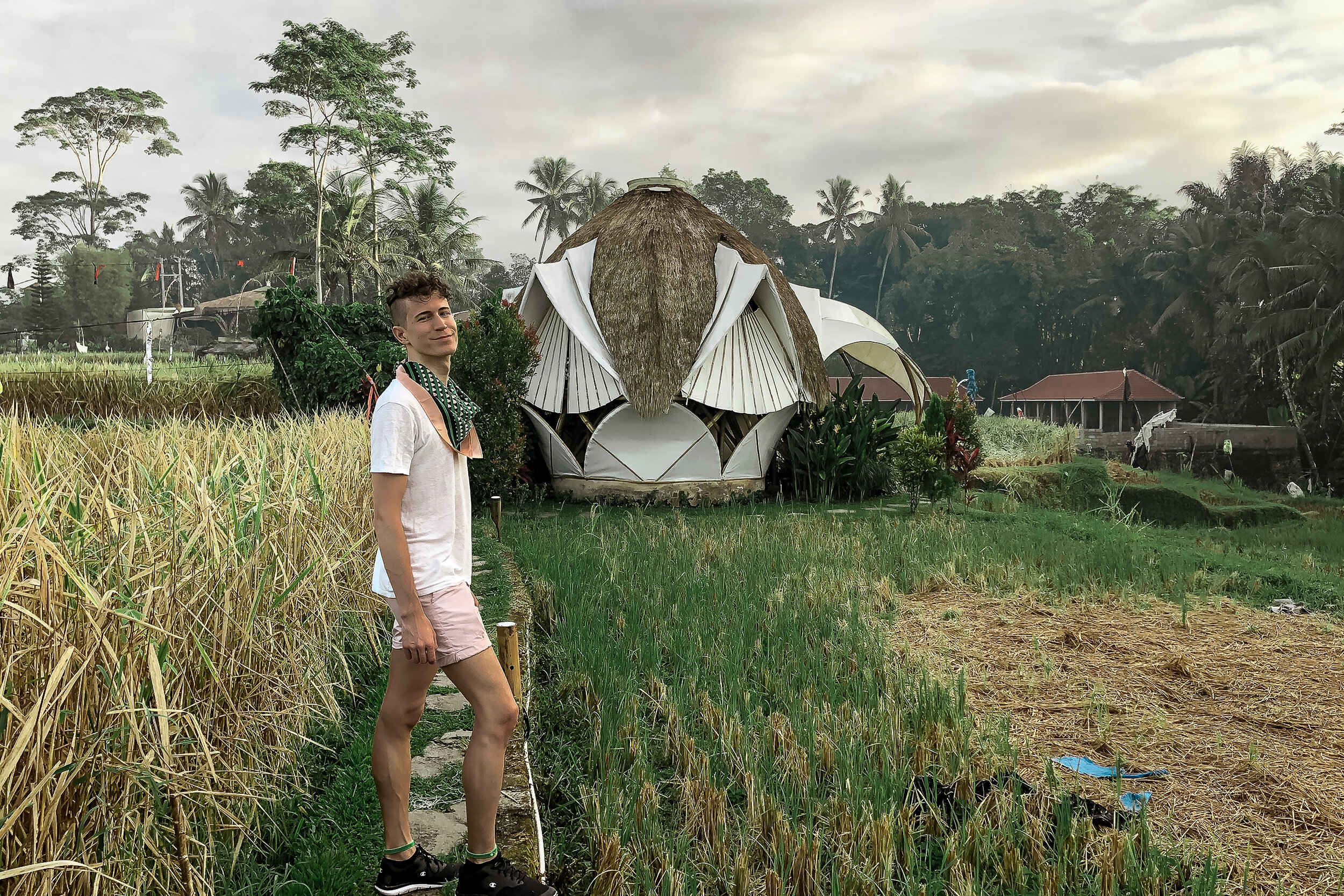
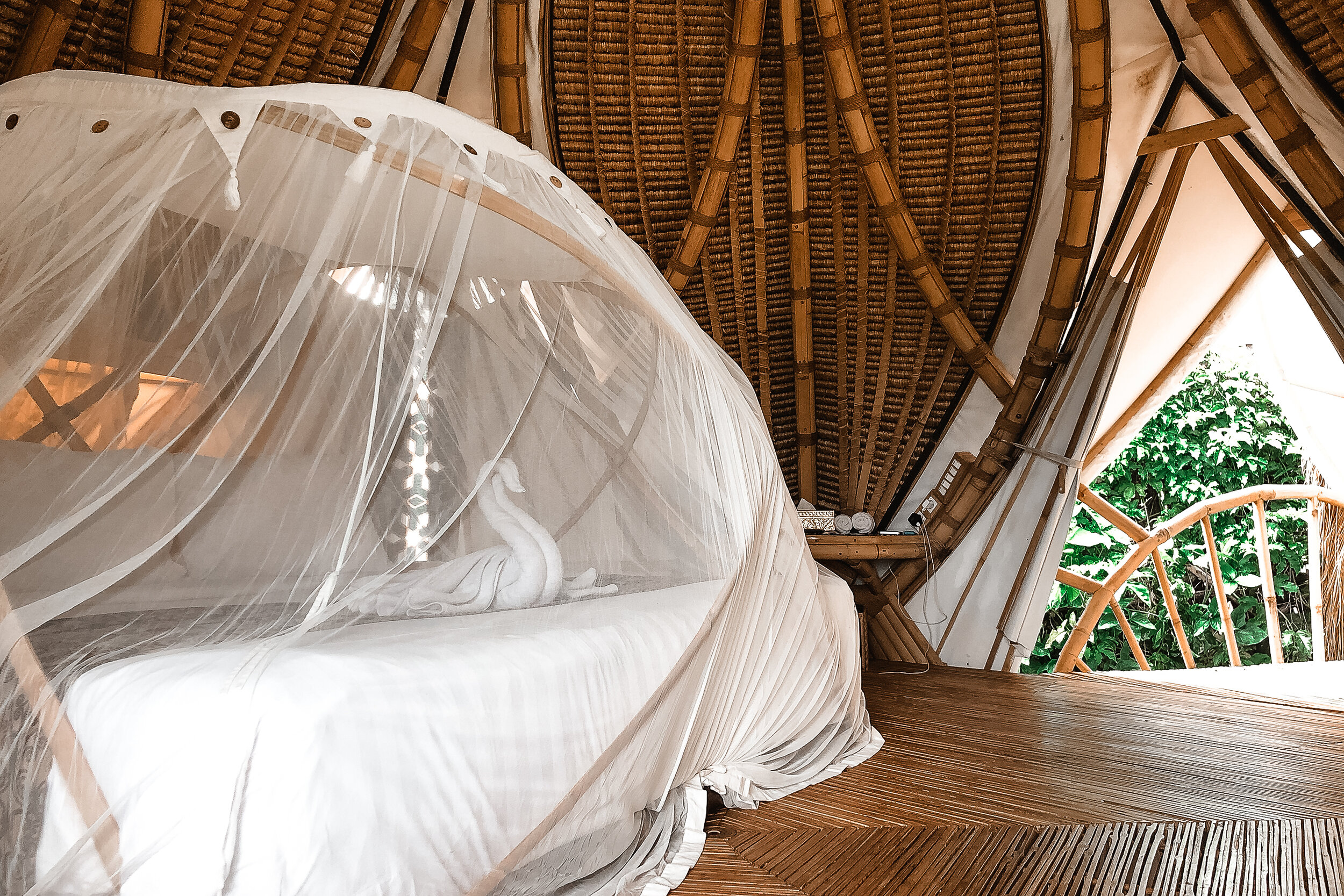
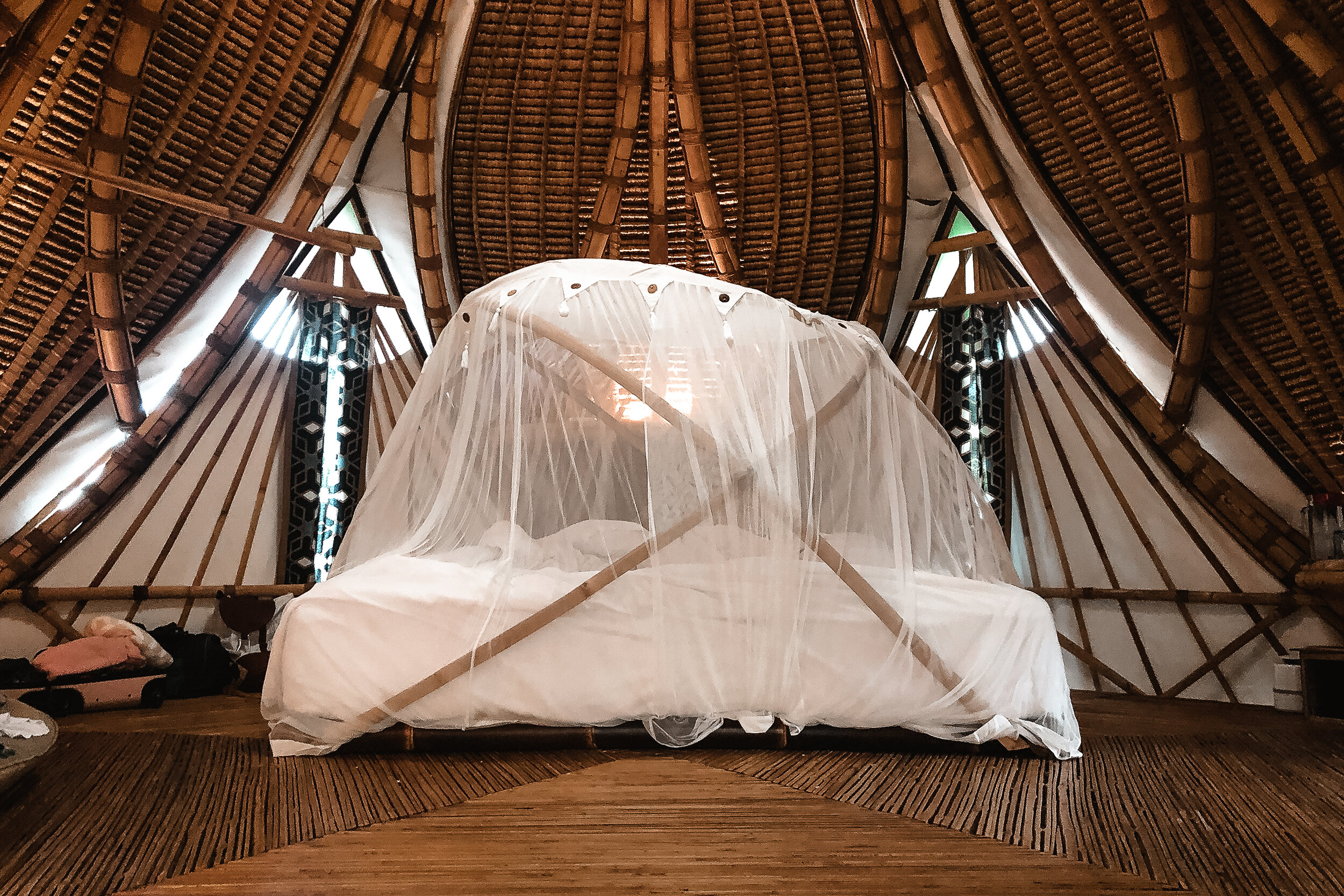
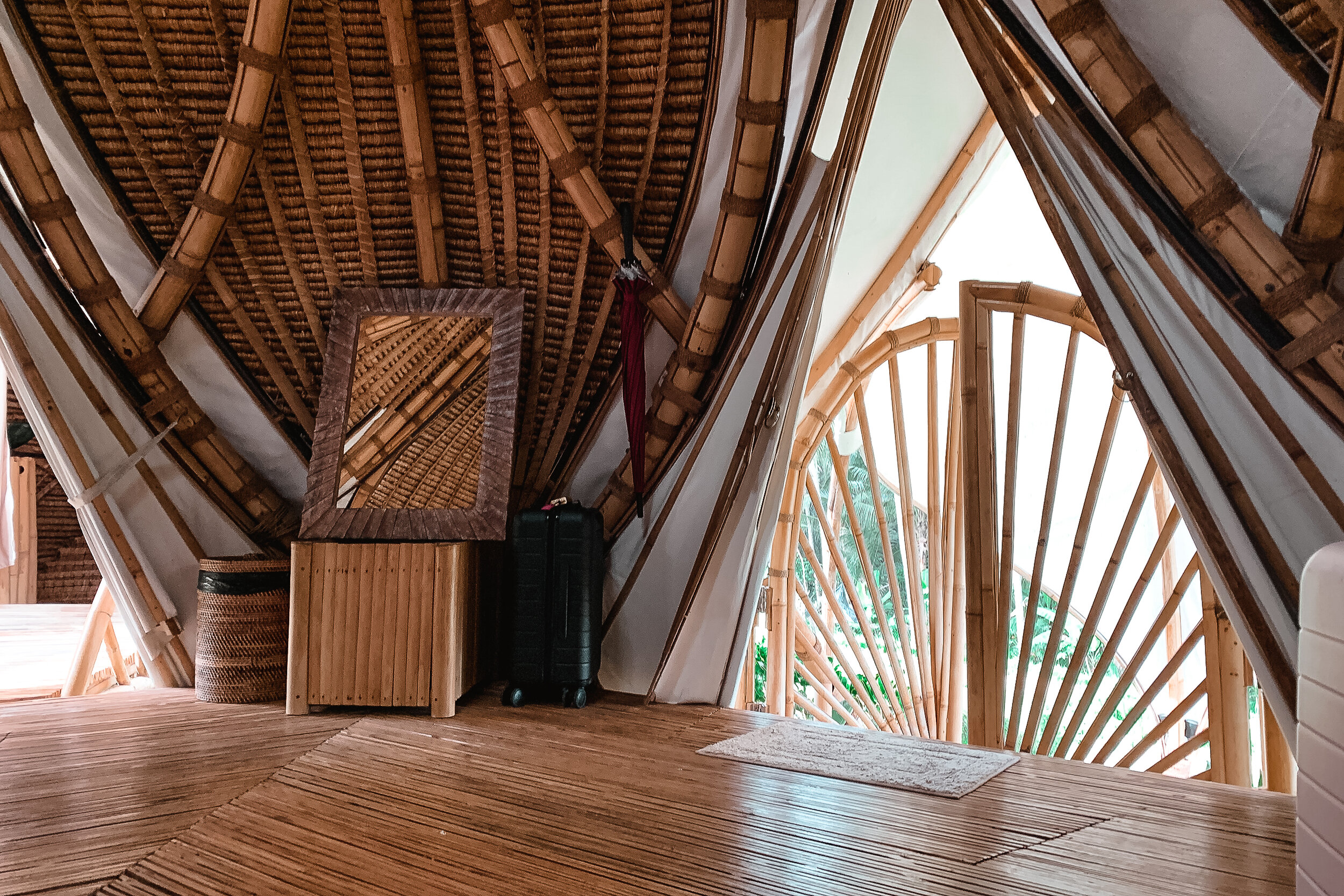
During our stay, we would often wake up to the farmers harvesting rice and herding baby ducks through the harvested plots resulting in natural fertilization. Across the rice fields was Akasha Restaurant. A larger open air bamboo framed restaurant focused on sustainability, vegan cuisine and hosting nightly events and festivals. We enjoyed most of our early morning and late night meals here.
From eco-domes to tree houses or hostels and villas in the rice patties, there are plenty of unique and sustainable places to stay in Ubud.
Getting Around:
Many accommodations in Ubud will help arrange transportation for you, especially to and from other areas of the island. Ubud and the surrounding area is vast and hilly making scooters and taxis the easiest way to get around. We often took Bluebird Taxi, known for its metered service, flat fees and street-side taxi stands.
Things to Do:
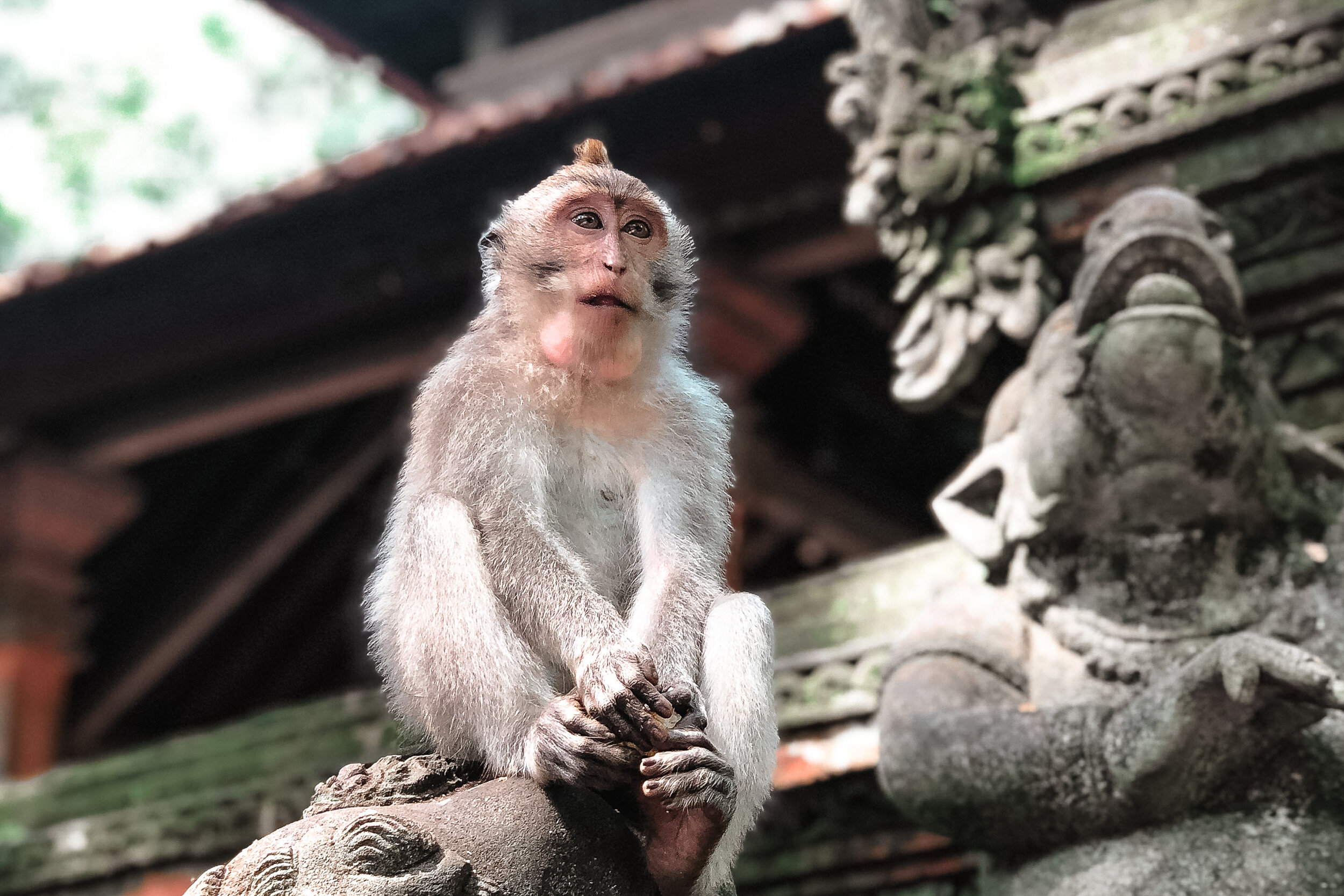
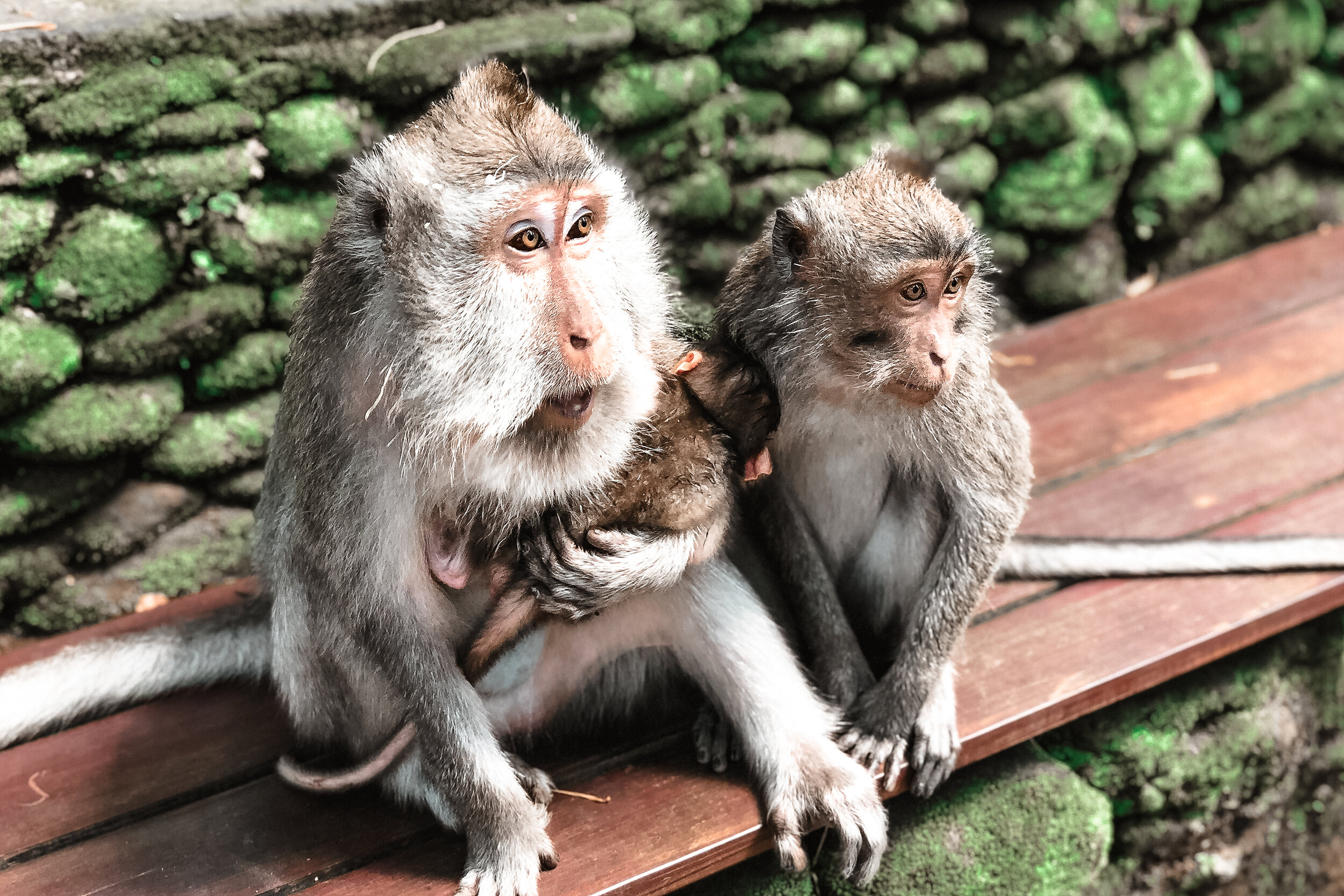
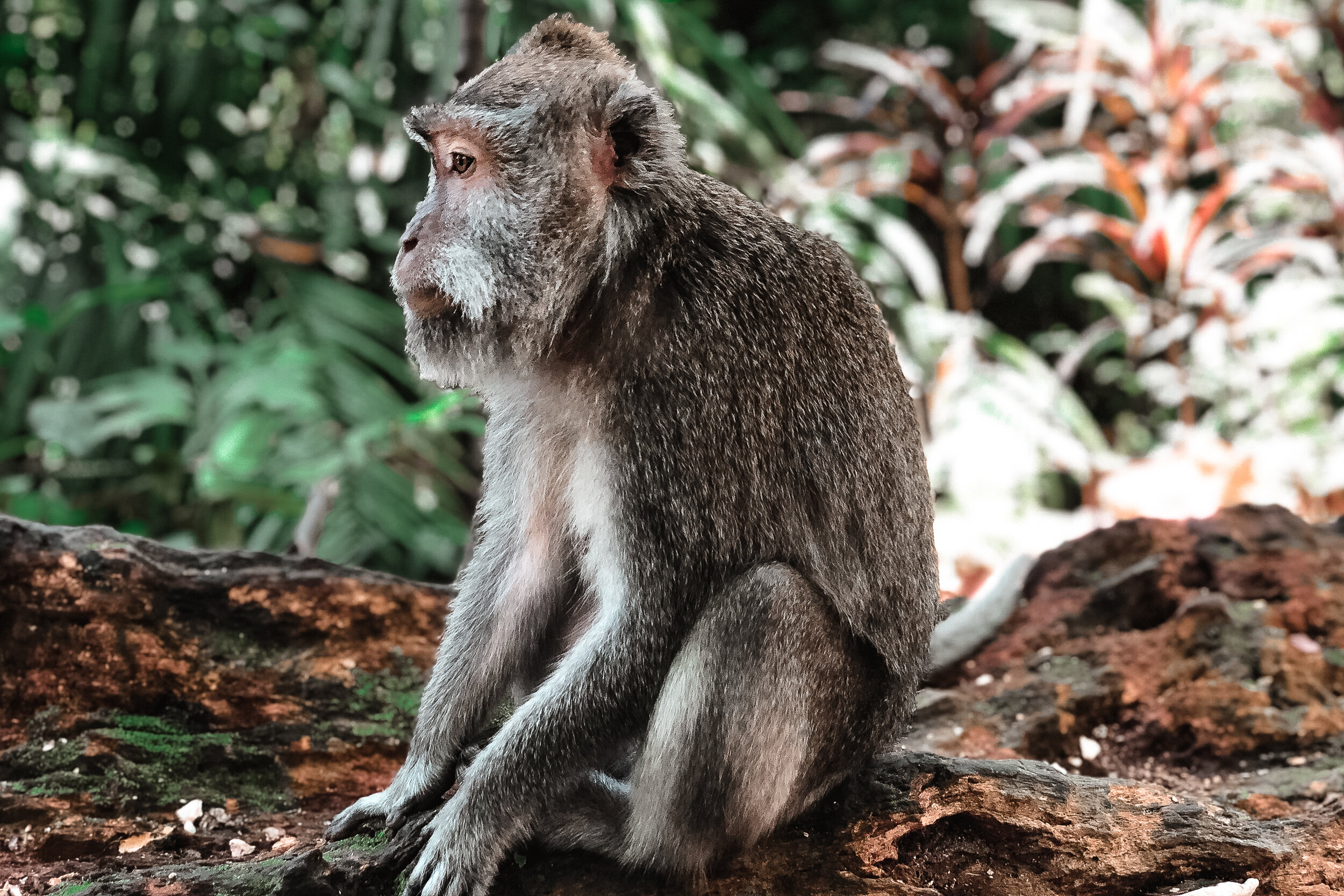
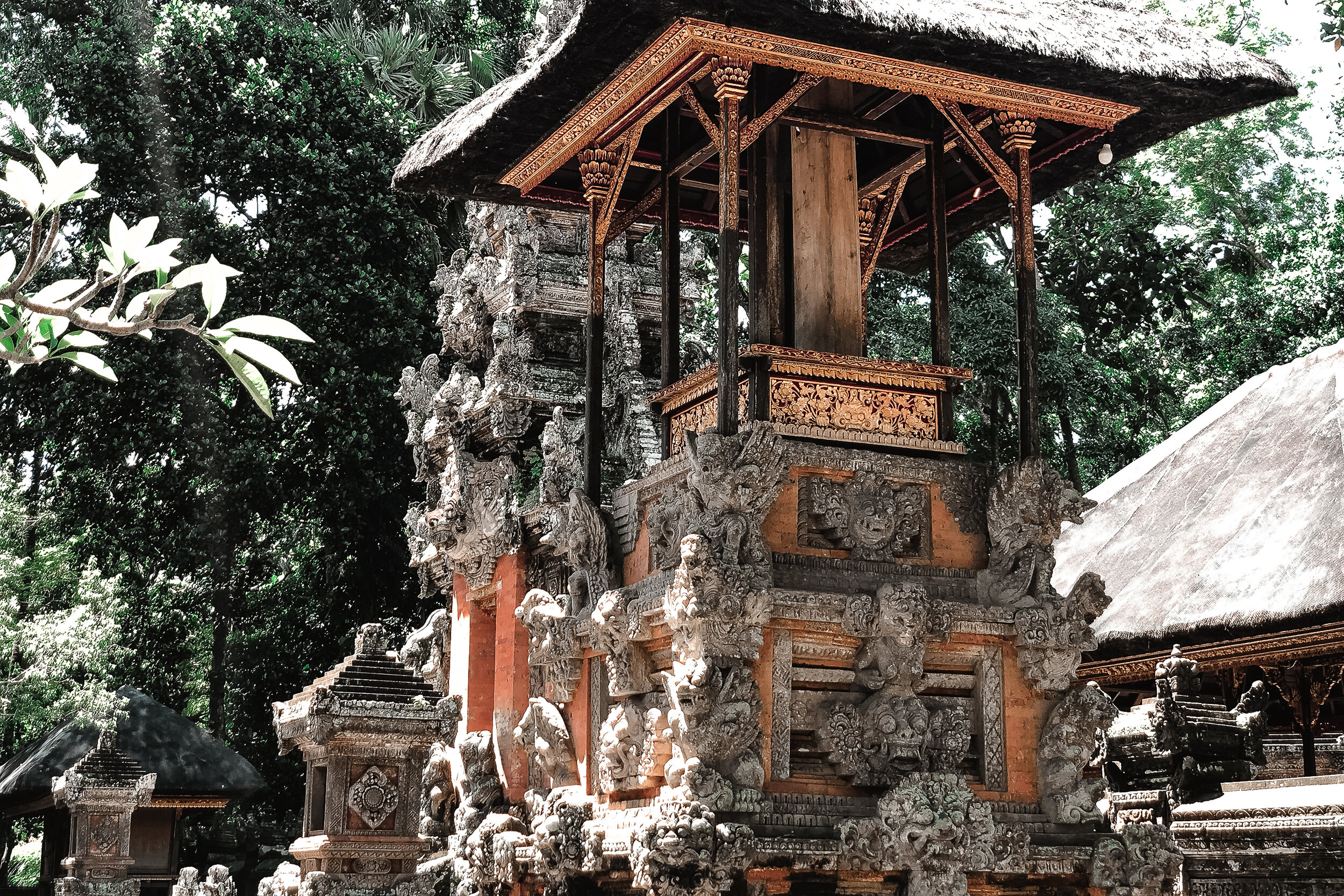
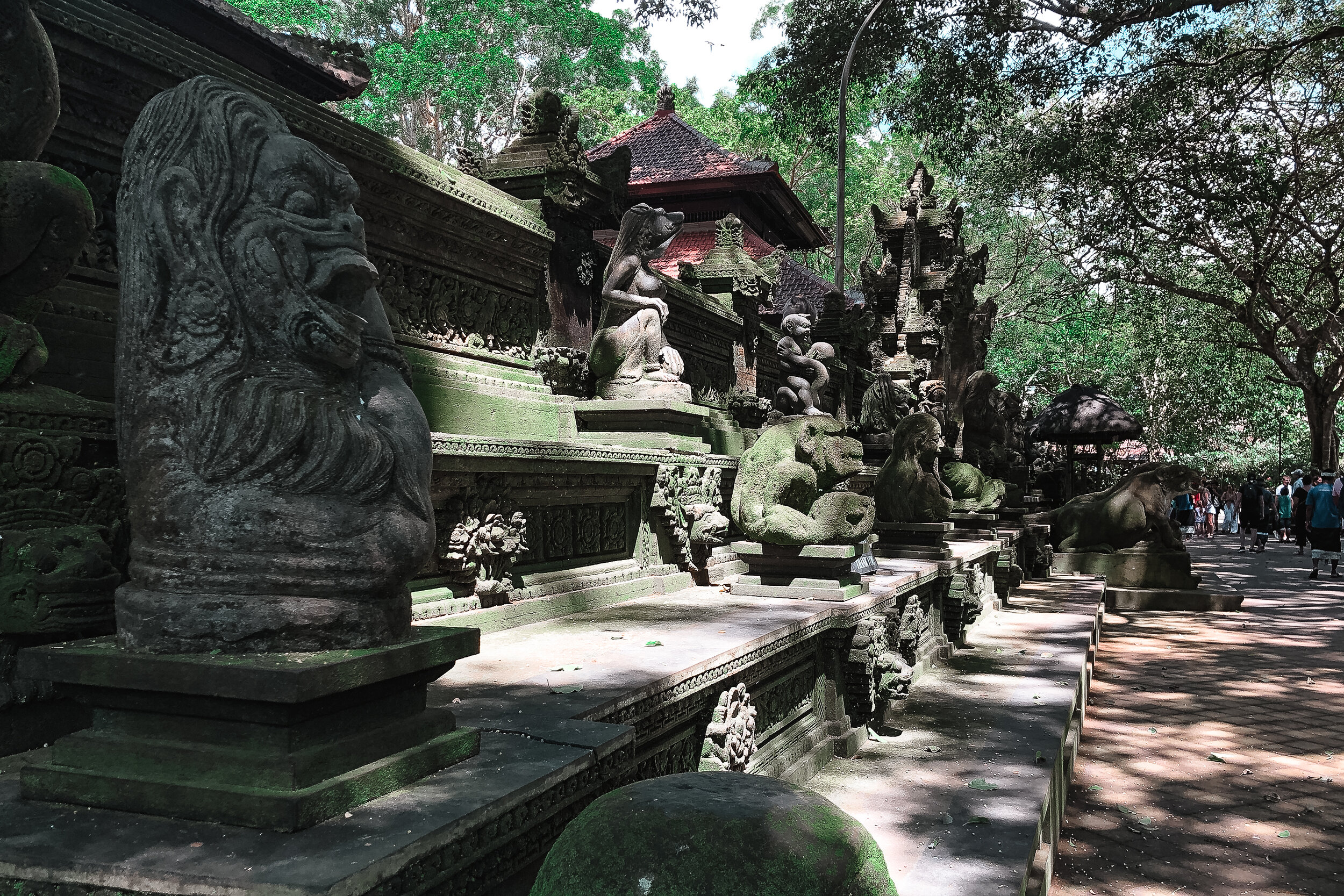
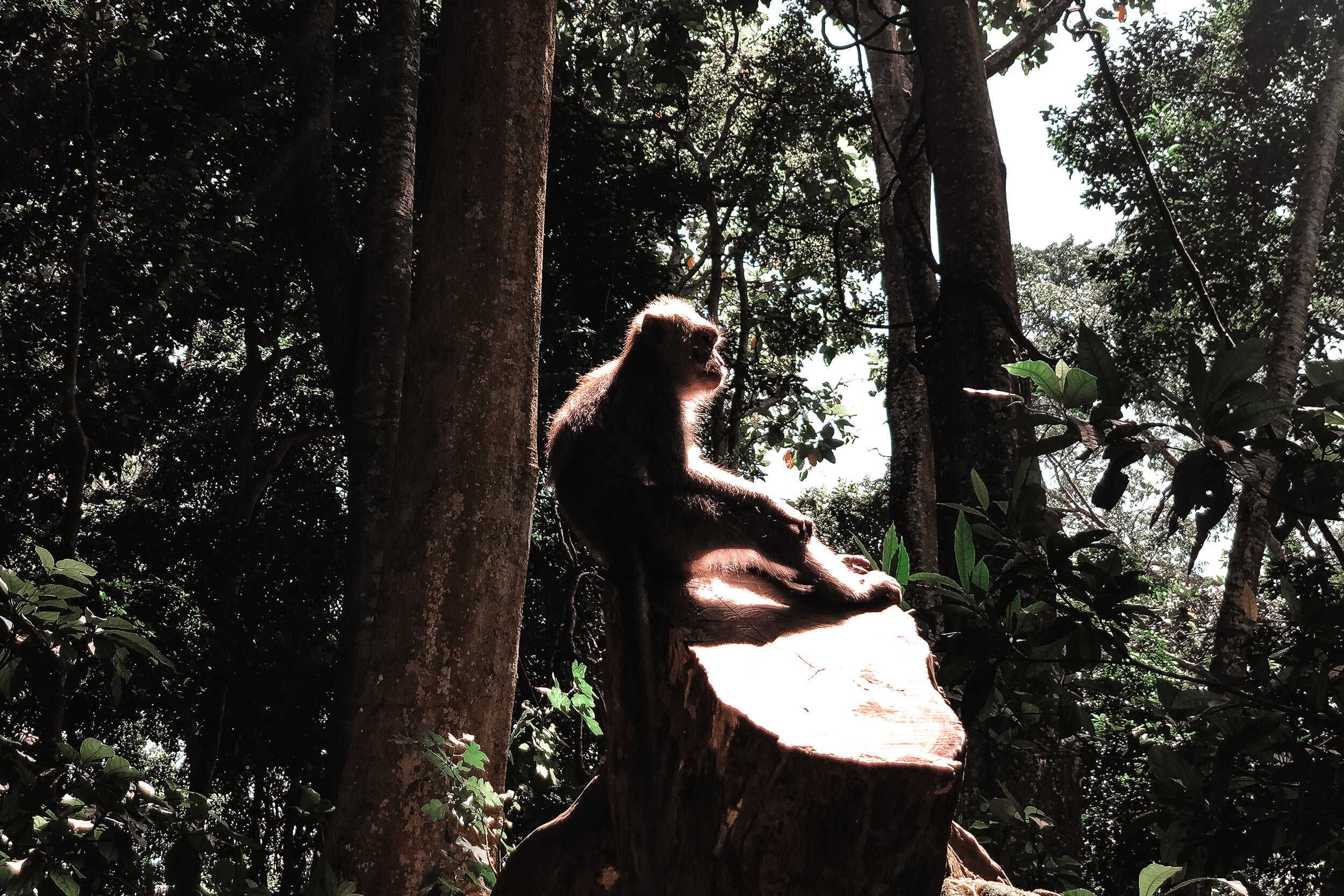
Sacred Monkey Forest:
The forest is covered in massive trees with dangling aerial roots, multiple ancient temples and acts as a sanctuary for hundreds of monkeys. The monkeys are everywhere, climbing in the trees, running across pathways, sitting on benches and making the temples their home. They are playful, mischievous and protective. If you’re not paying attention, one may try and take your phone, bag or hat. We saw this happen! You can truly get an up-close experience with them.
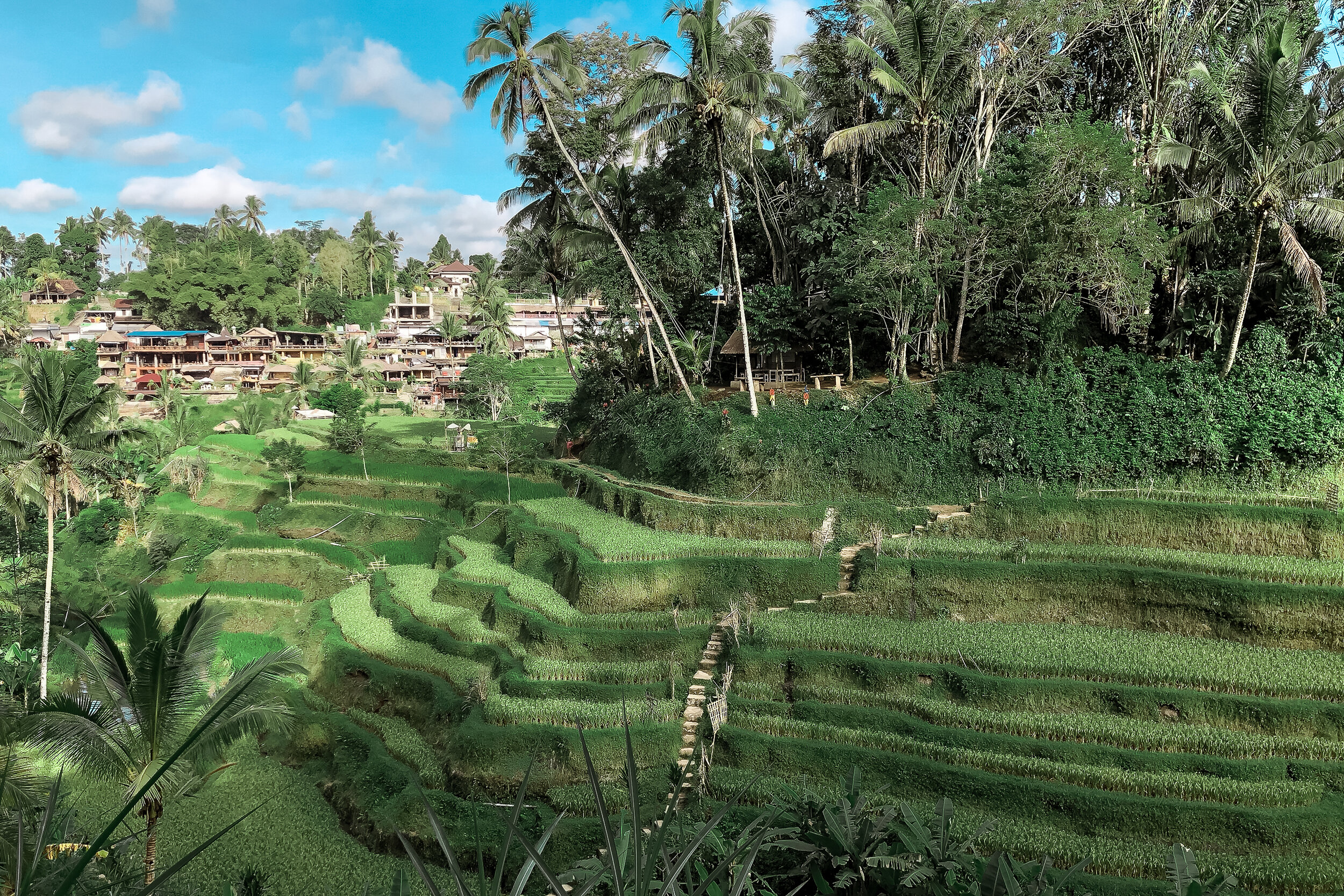
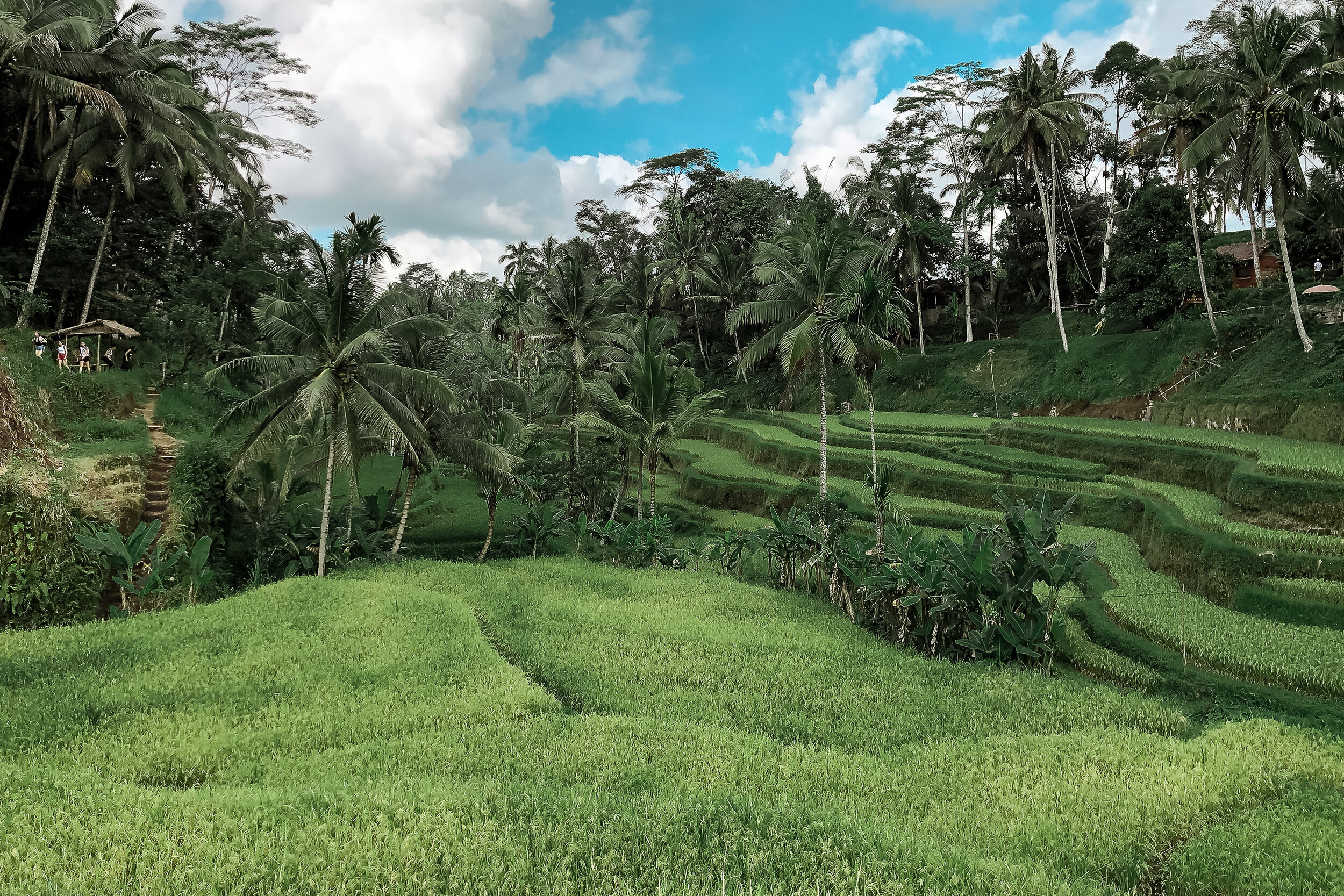
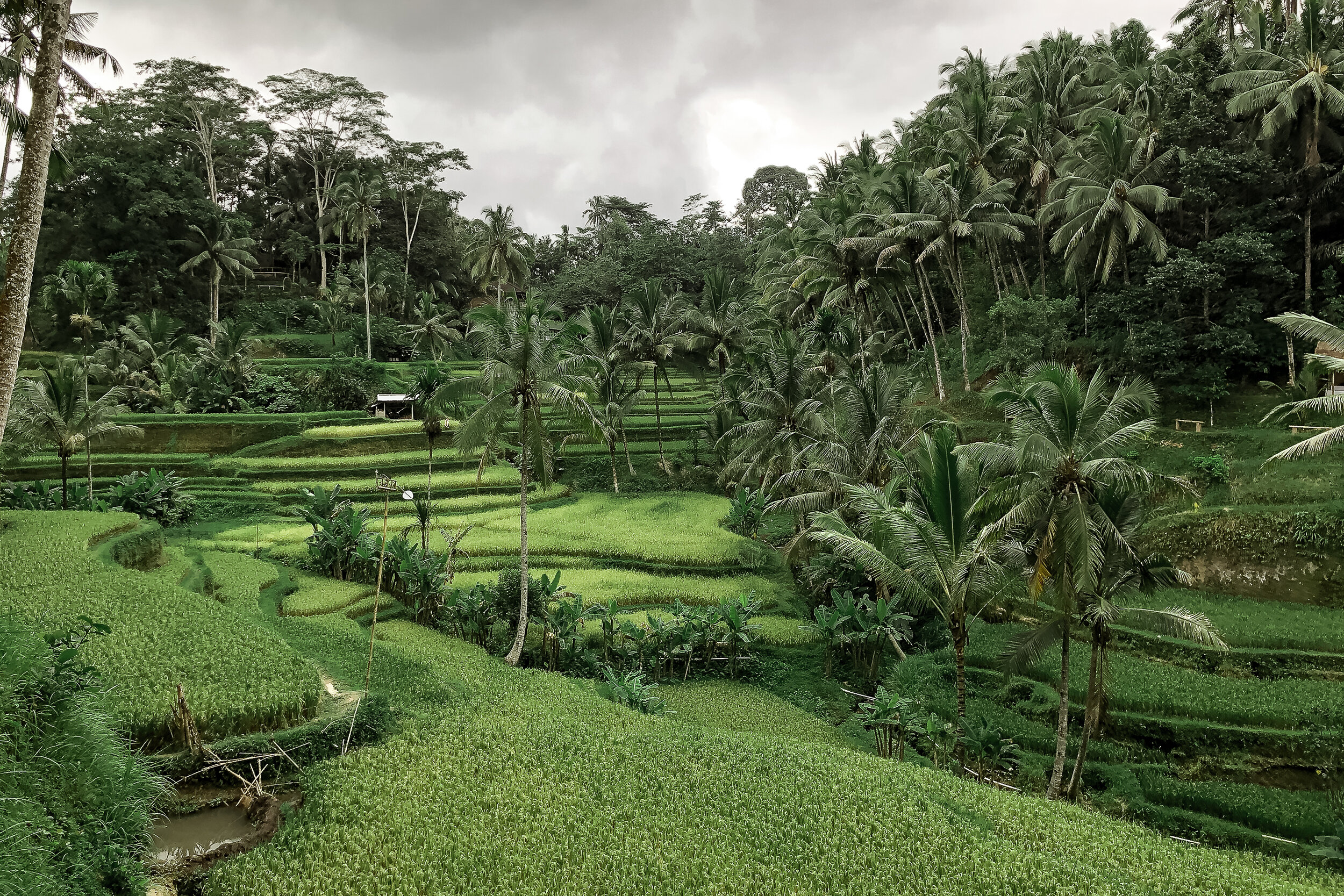
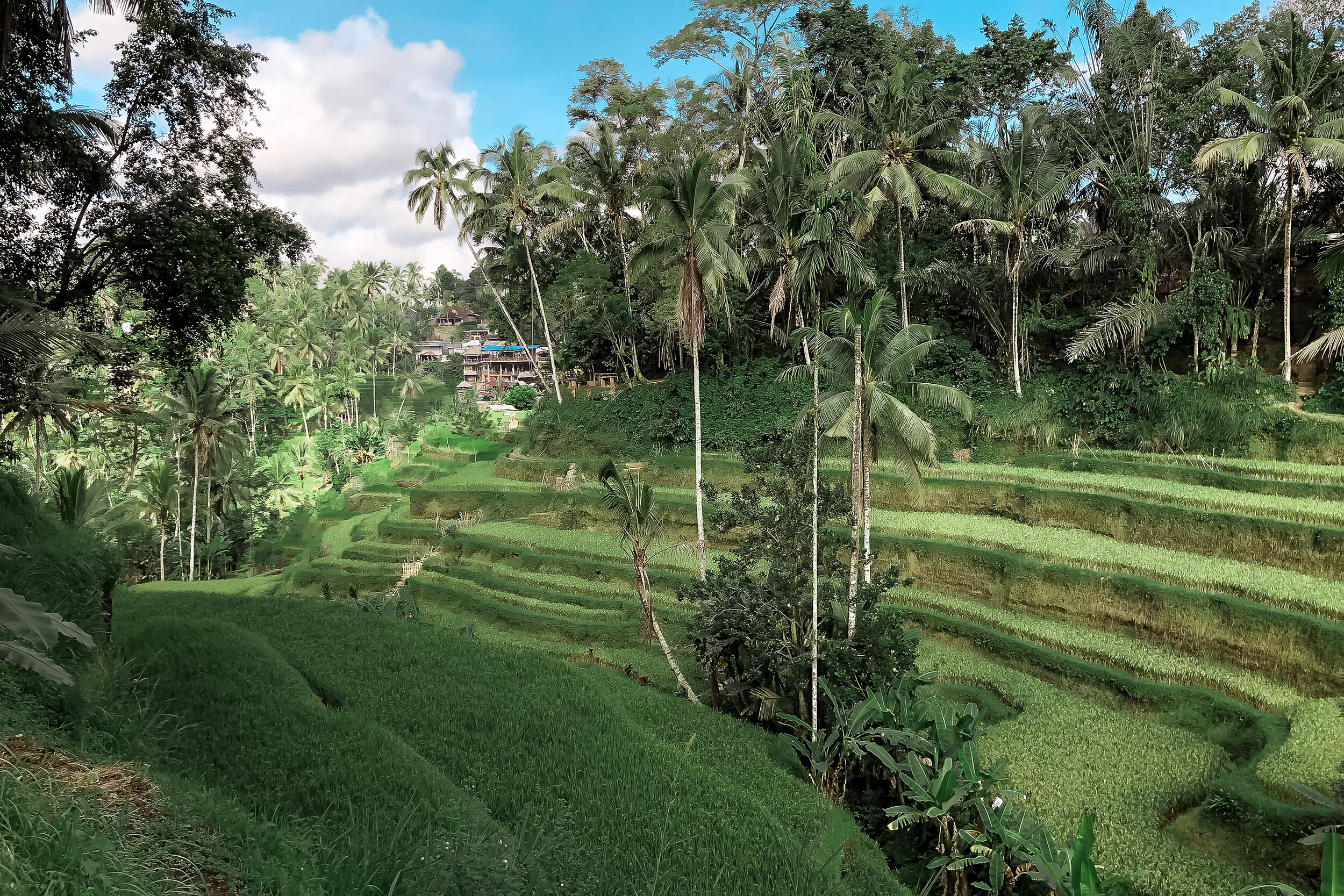
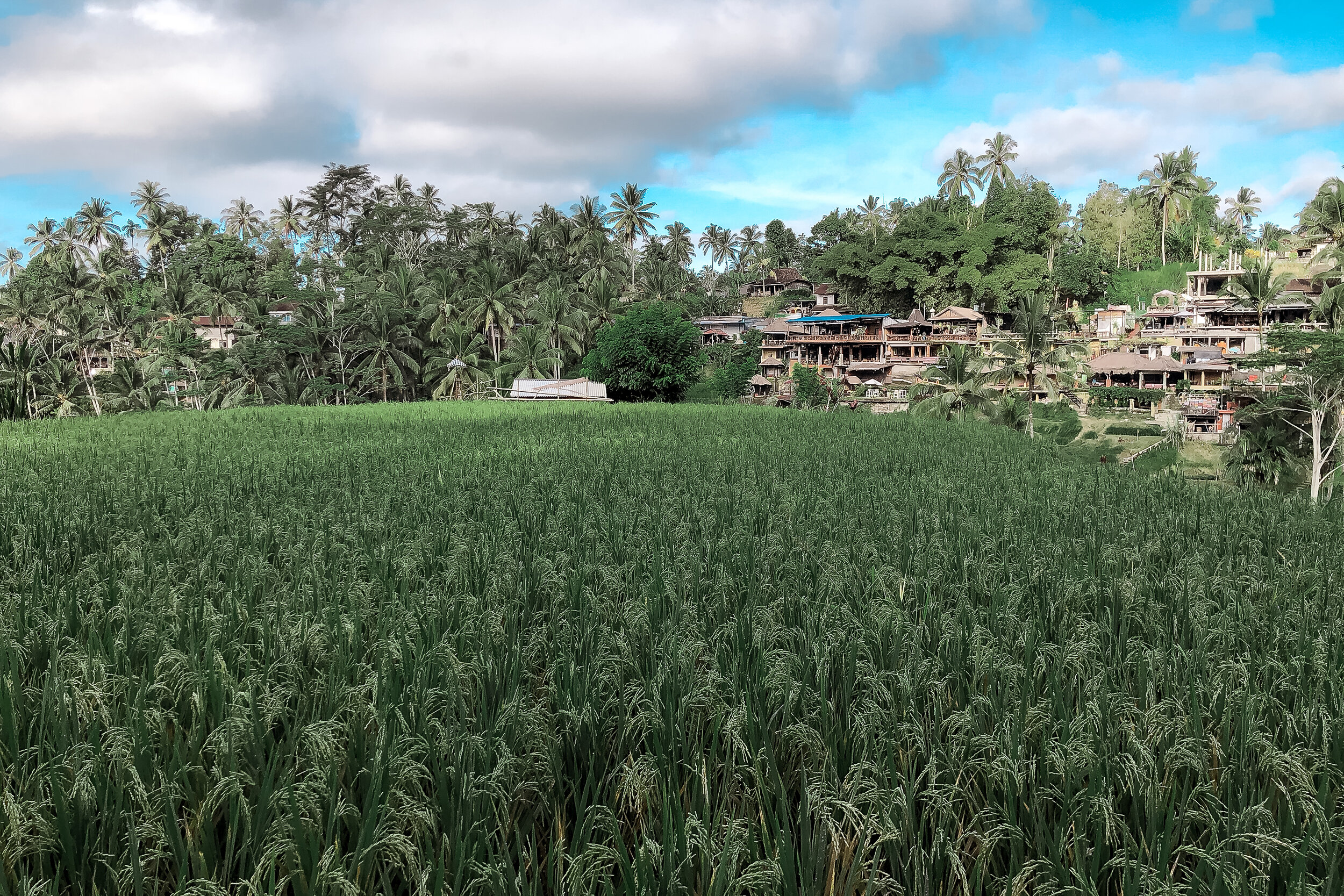
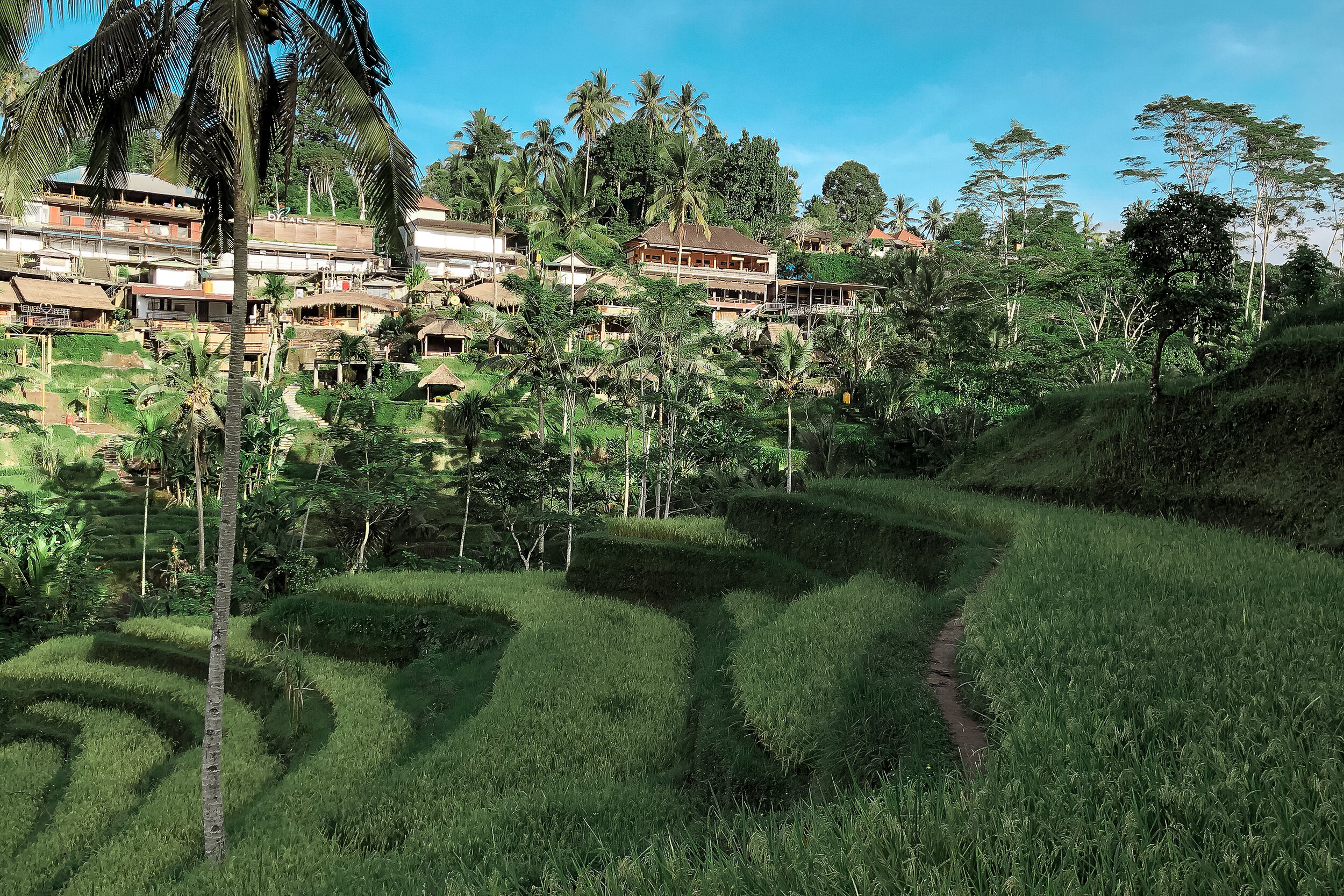
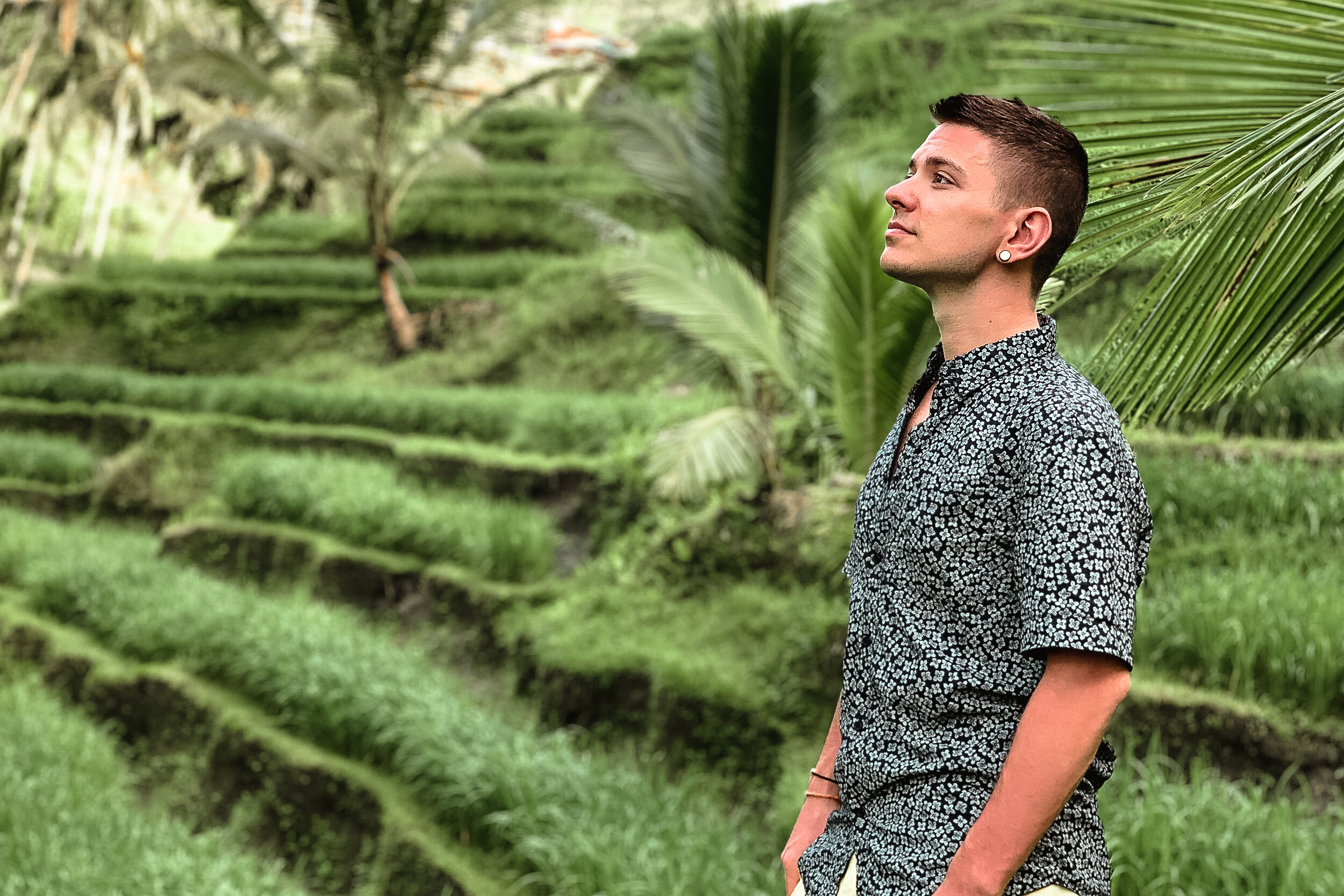
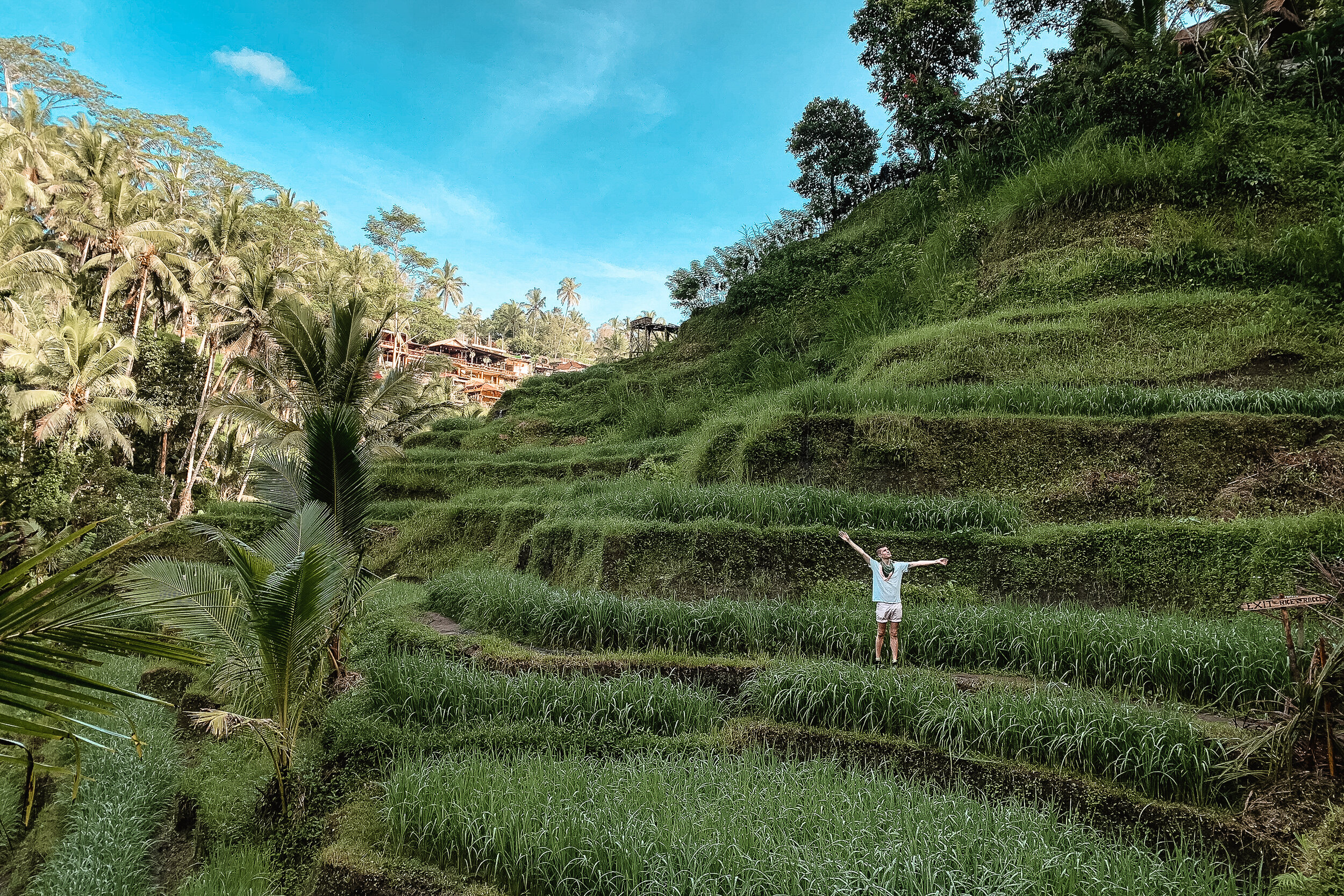
Tegalalang Rice Terraces
The lush, expansive hillside rice terraces were one of our favorite sights to explore in Ubud. We got here at 7am, hours before they filled up with larger numbers of tourists. We stayed until the early afternoon weaving through the vertical expanses and hiking to the furthest corners. At the entrance, there is a hillside village with restaurants, warungs, cafes and hostels overlooking the terraces. Throughout them are zip-lines, jungle swings and farmers stationed at various points who will ask for a small donation to help support their livelihood and maintain the walkways. Its best to donate 5K Rp each time (less than 50 cents).
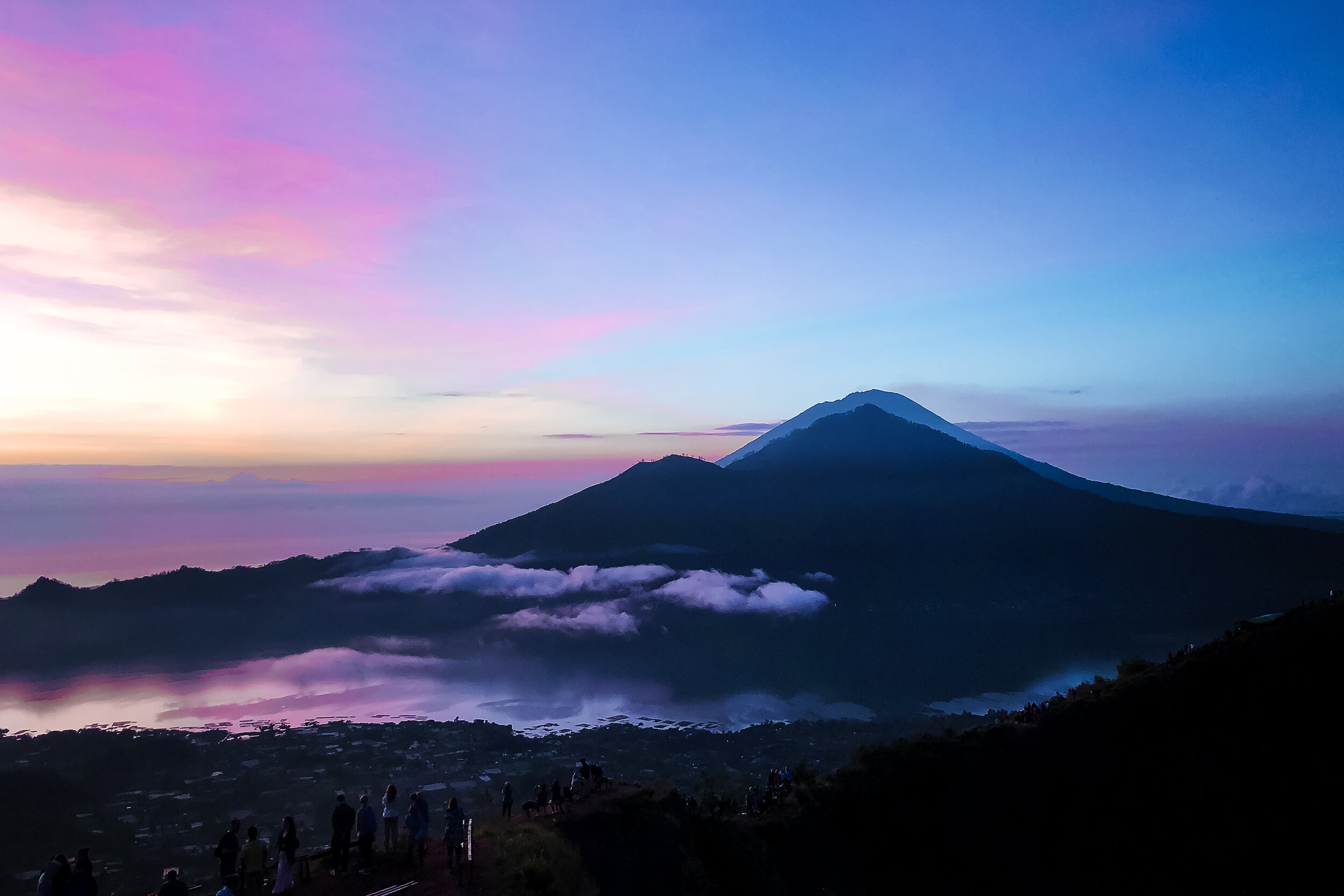
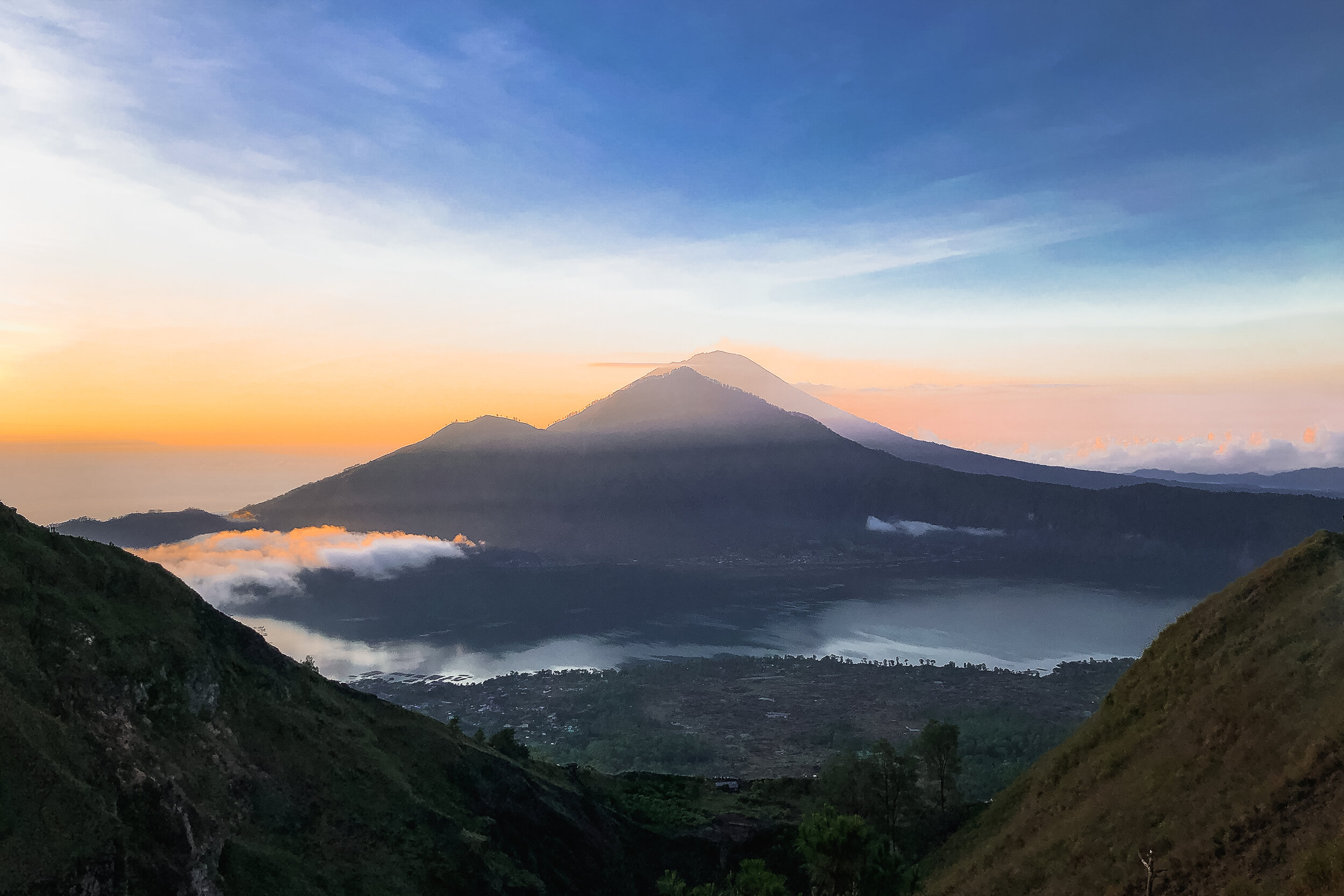
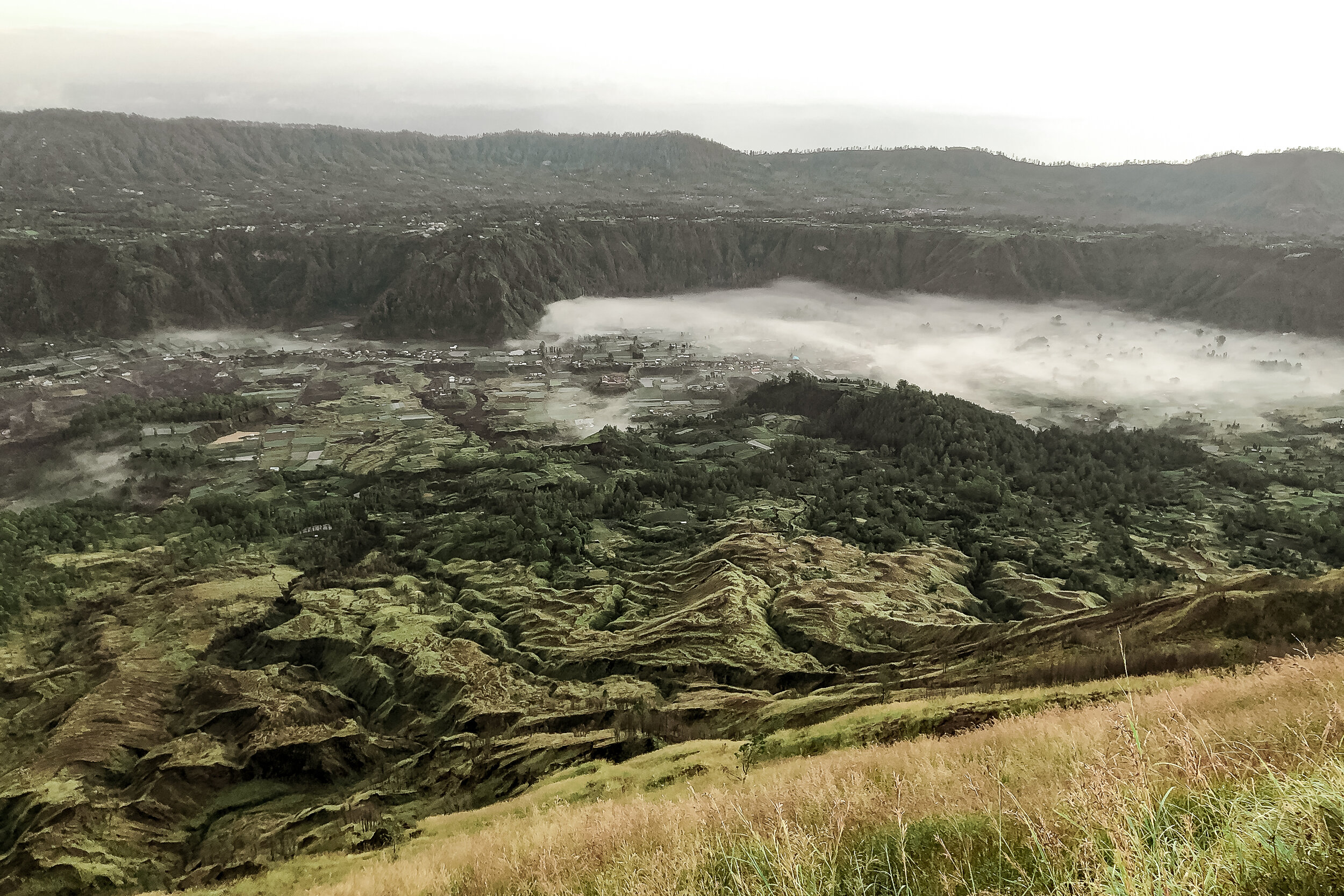
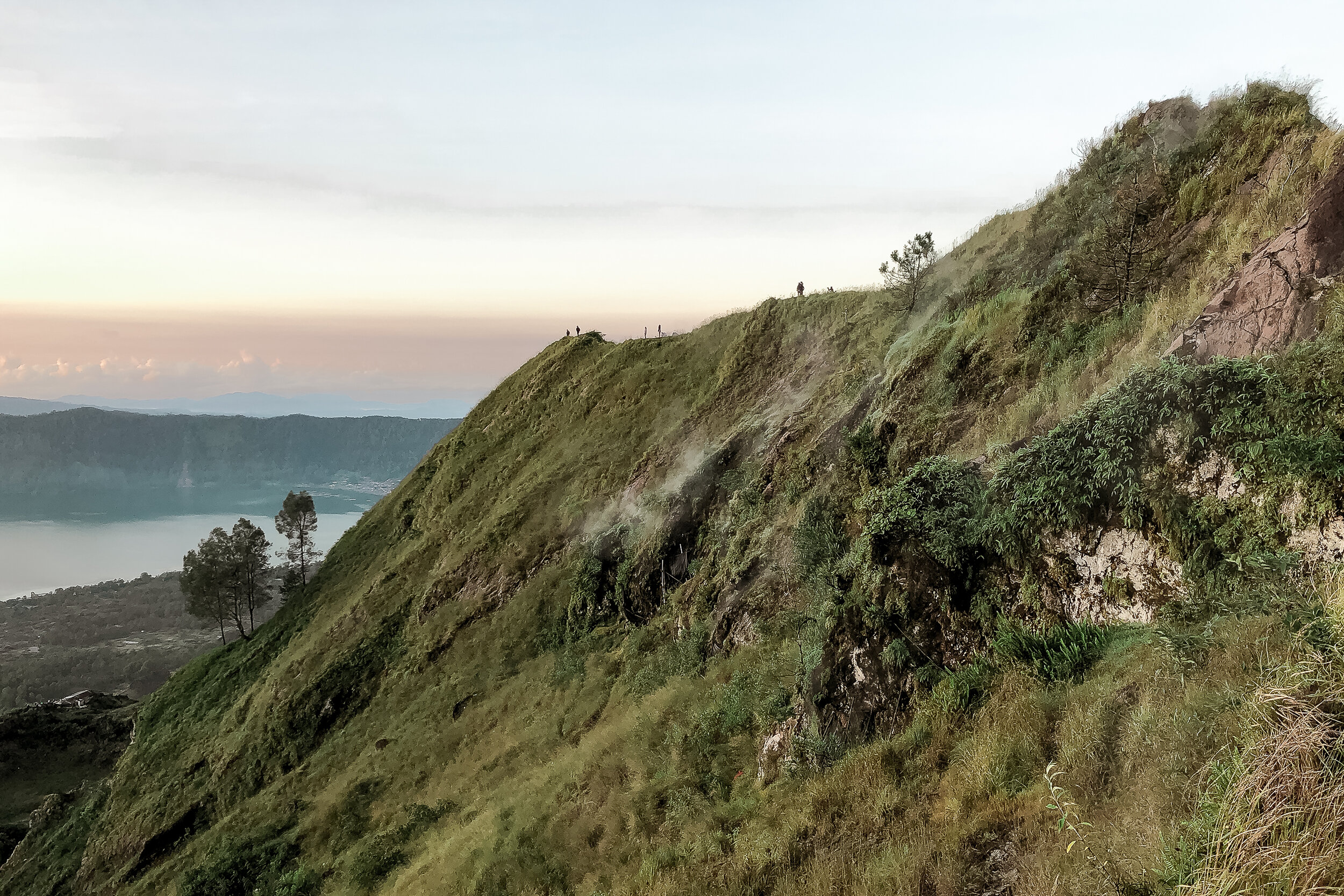
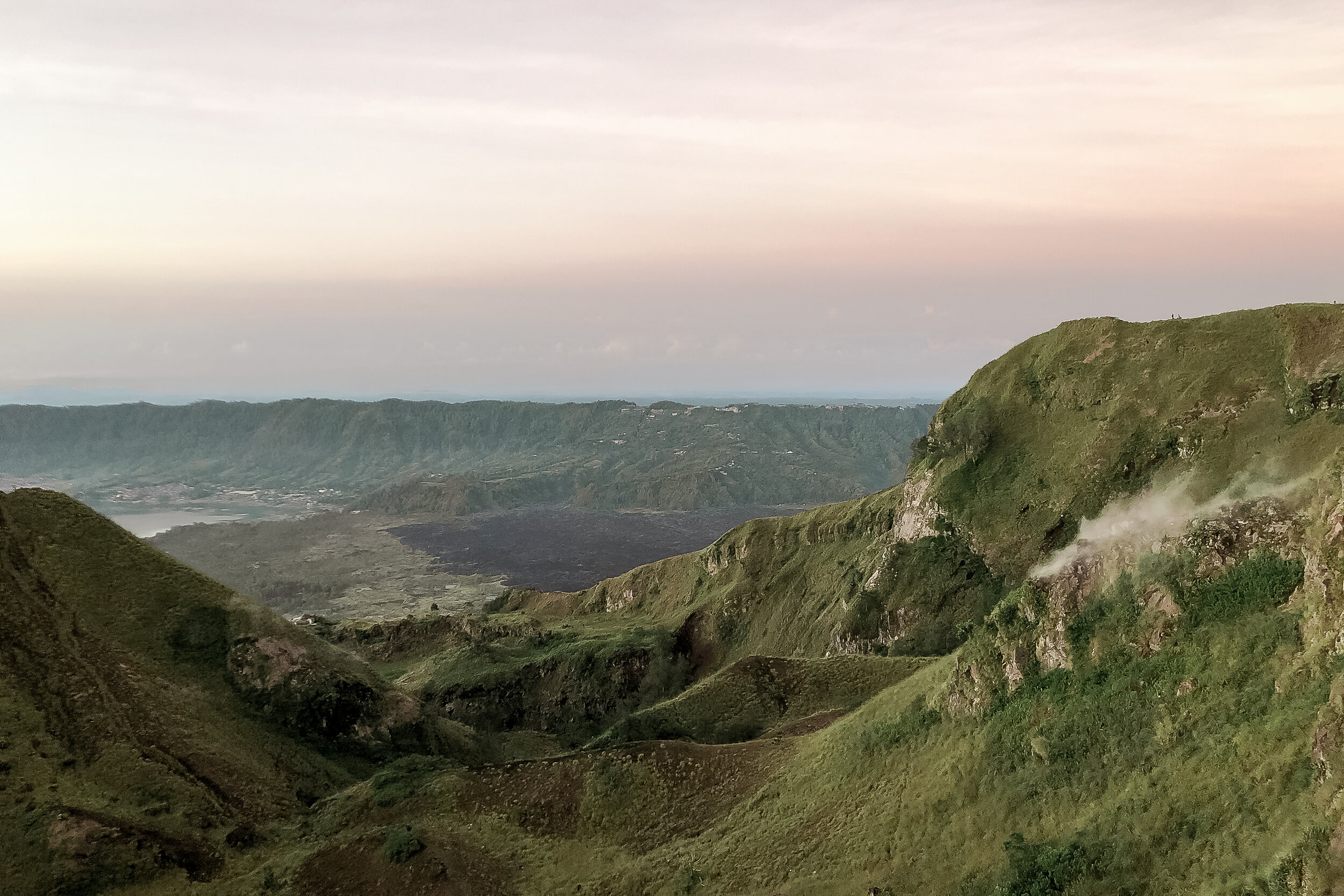
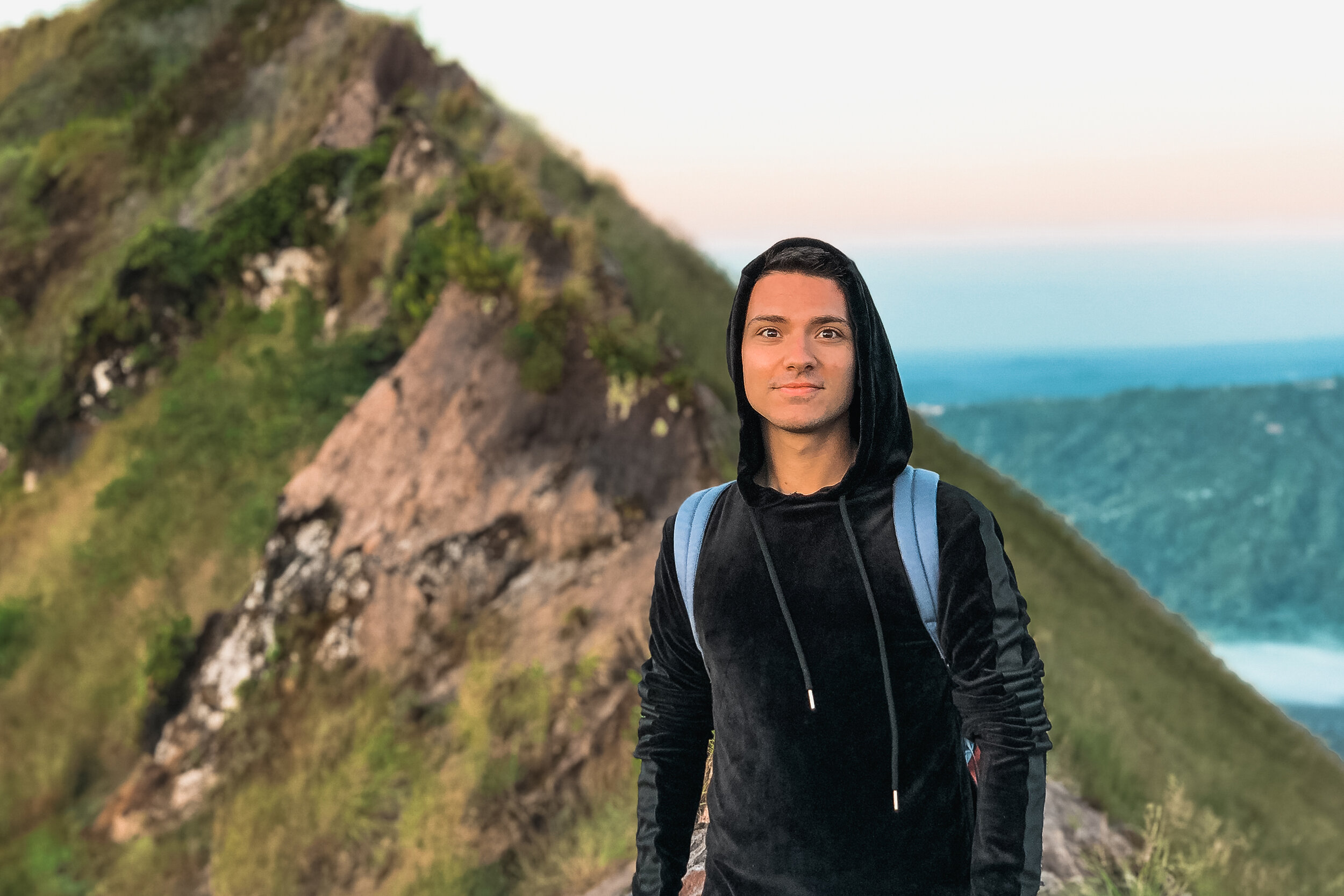
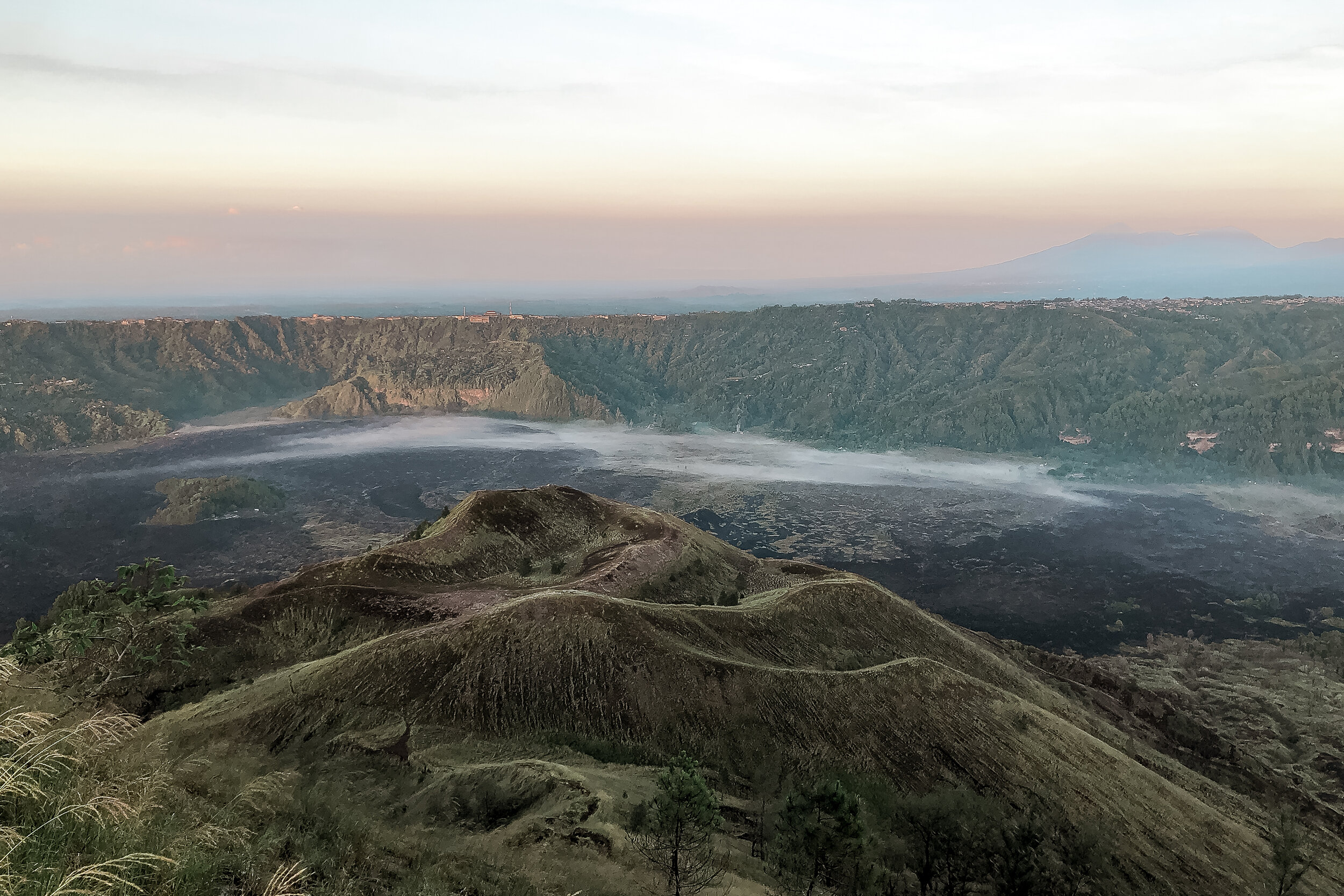
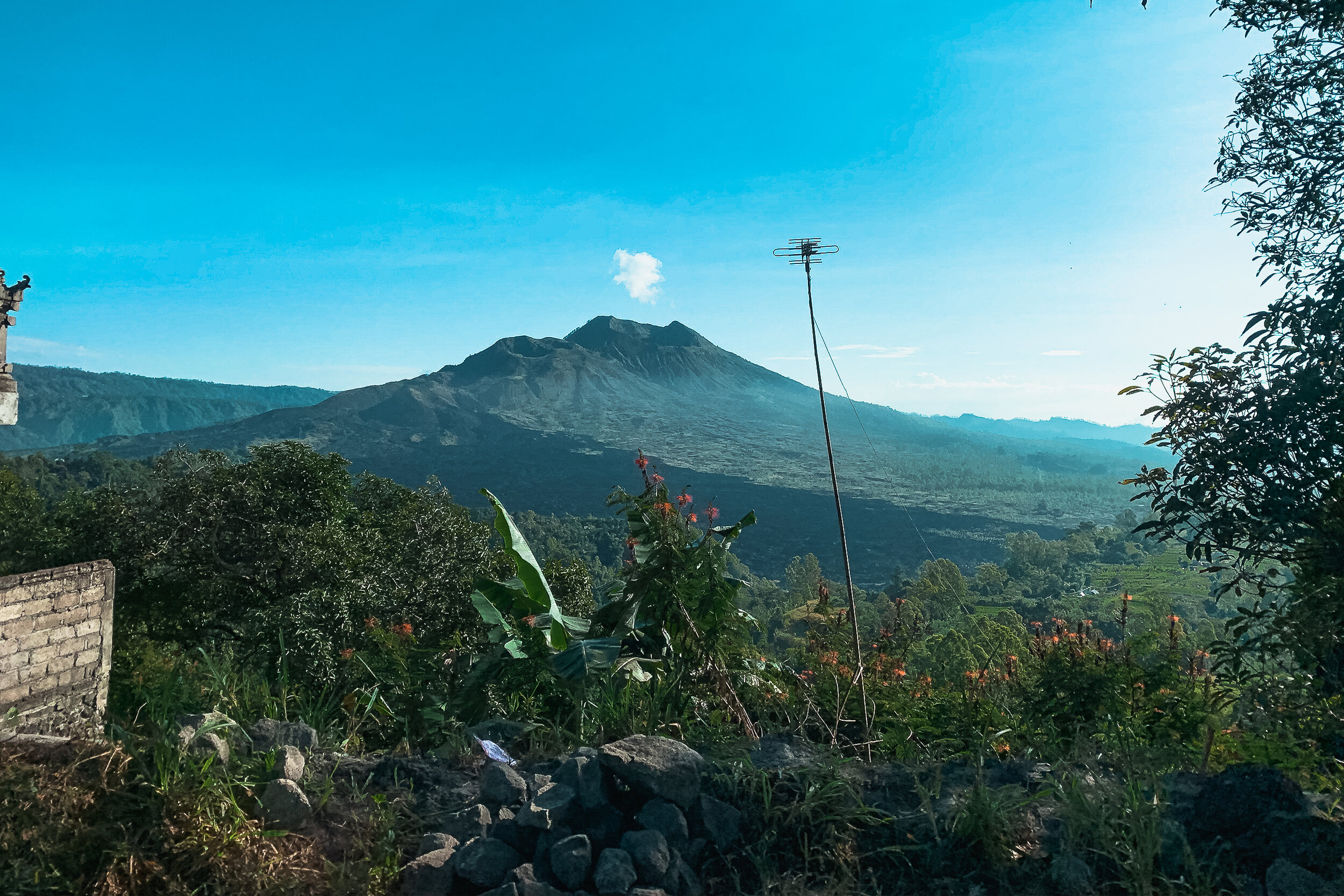
Sunrise Hike to Mt. Batur
Mt. Batur is Bali’s second highest peak and still an active volcano. One of the most adventurous things you can do on the island is hike to its summit and watch the sunrise. Wake up just after midnight and drive to the basecamp of Mt. Batur at Toya Bungkah. There will be hundreds of guides available for hire. Guides generally cost around 500K - 700K Rp for two people ($35-$50 USD)
From the summit, you can see the entire island of Bali and the nearby island of Lombok. There will also be vendors selling hot chocolate, coffee, water and various snacks. As Mt. Batur is still an active volcano, guides will often bring eggs to hard boil in the steam vents. Try one if you can, there’s something special about food cooked by a volcano!
What to Prepare:
Wear good shoes for traction. The pathways are covered in loose stones gravel.
Wear layers. It is colder the higher you hike in elevation but easy to overheat.
Bring a flashlight to see, though this isn’t always needed after your eyes adjust to the darkness (plus you can see the stars)
Bring water, you will get dehydrated as you climb.
Claiming some bragging rights, we were the first visitors to reach the volcano’s summit that morning. A first for our guide, Cynthia, even after years of near daily treks up Mt. Batur.
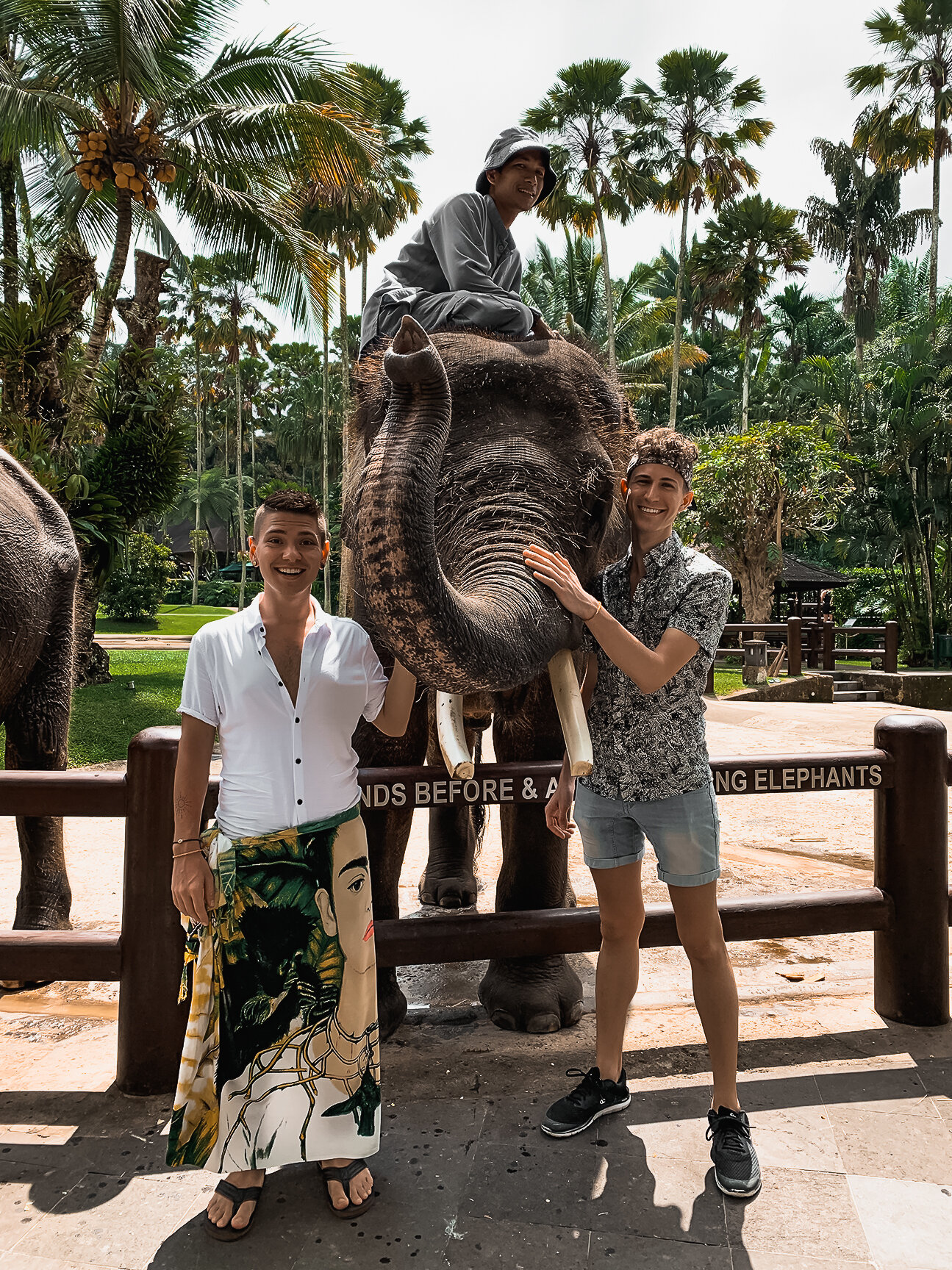

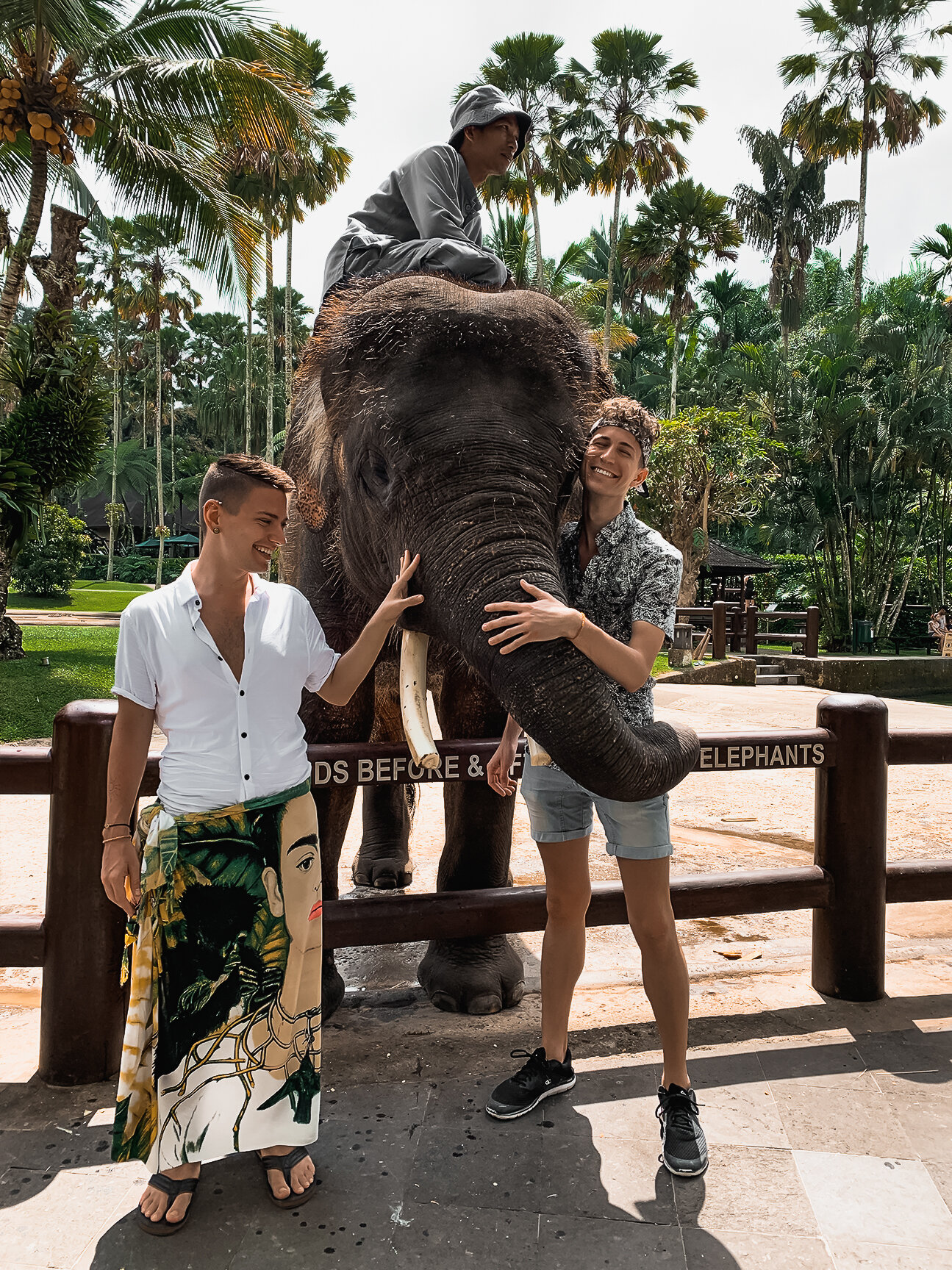
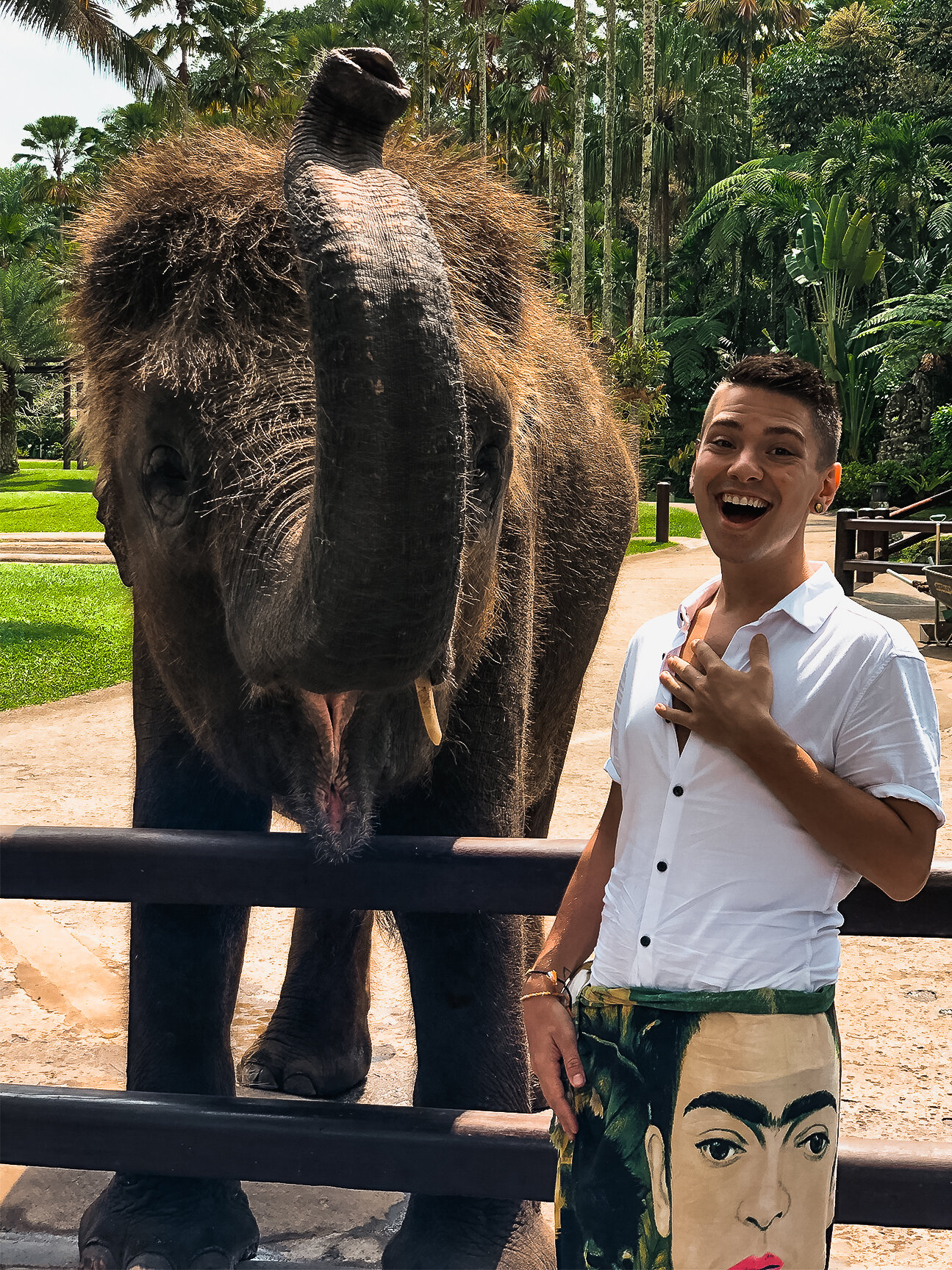
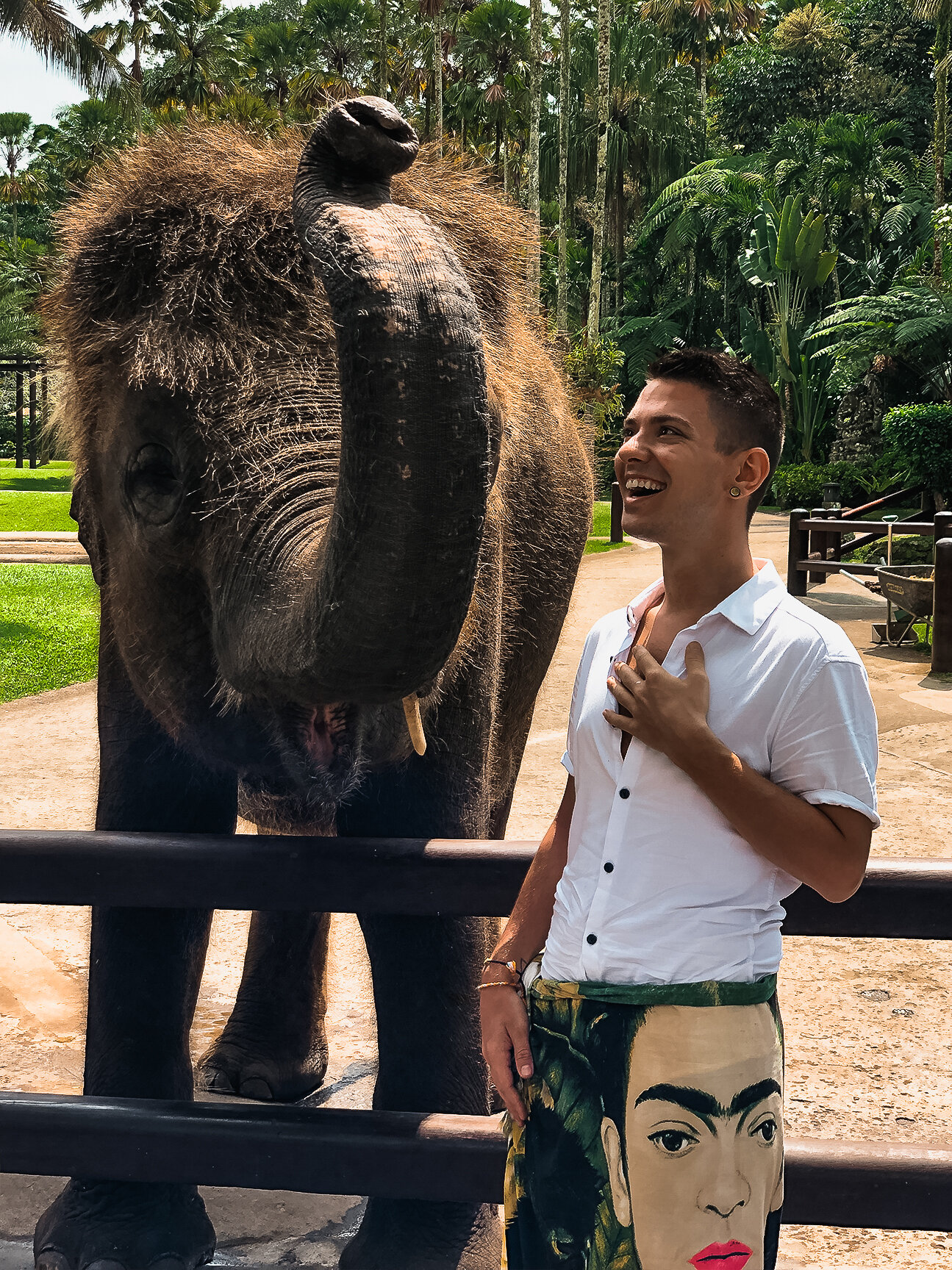
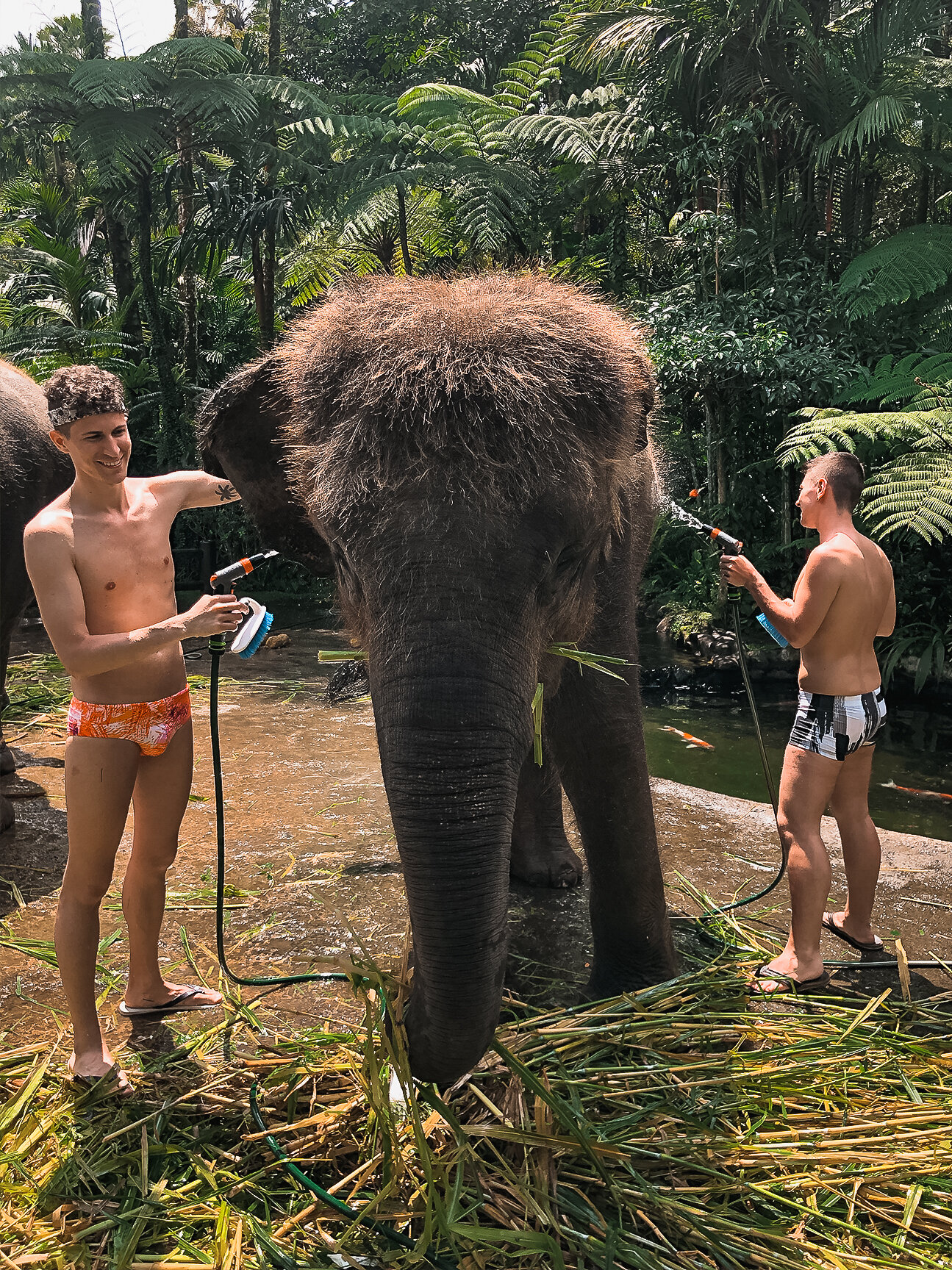
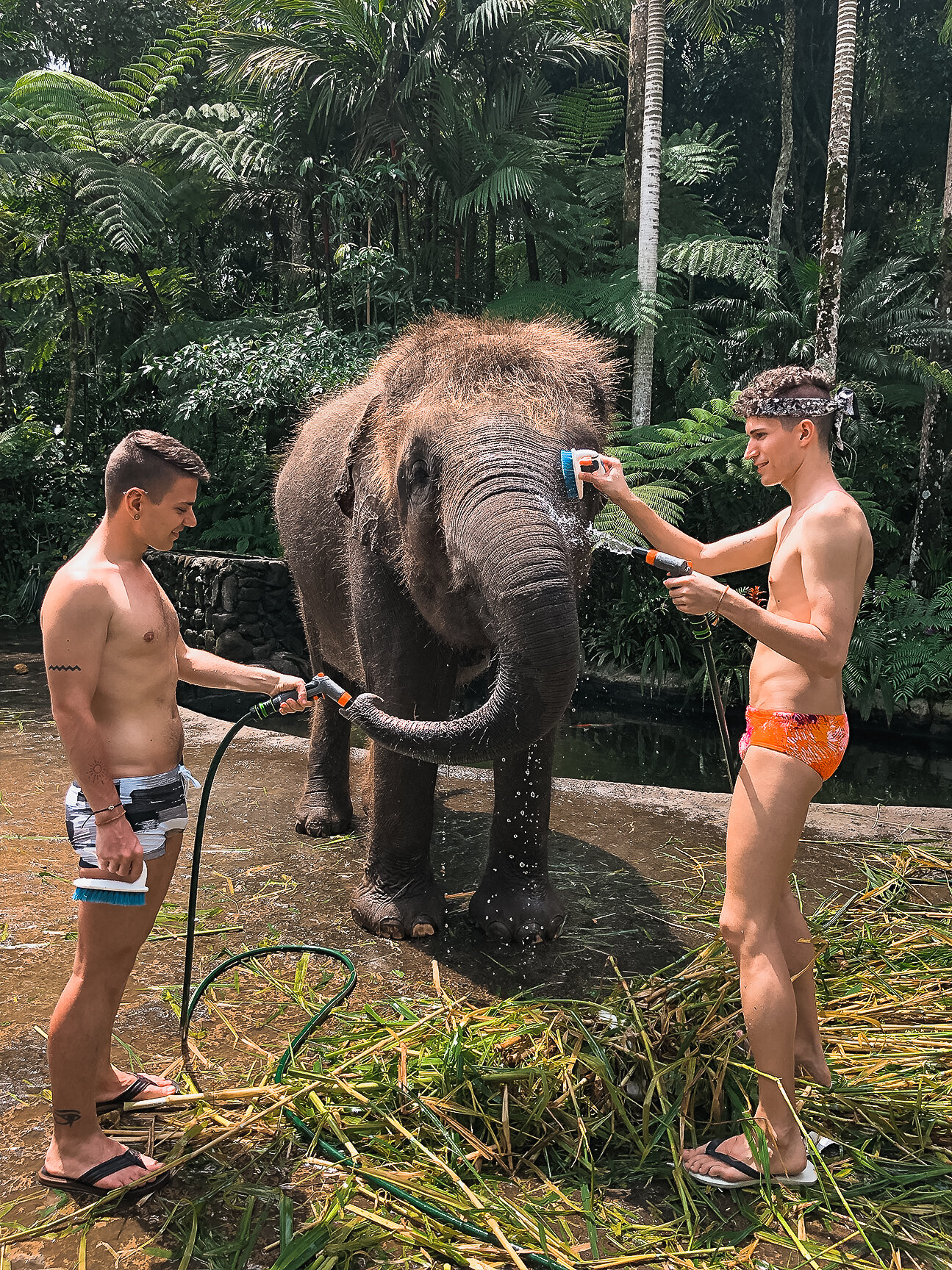
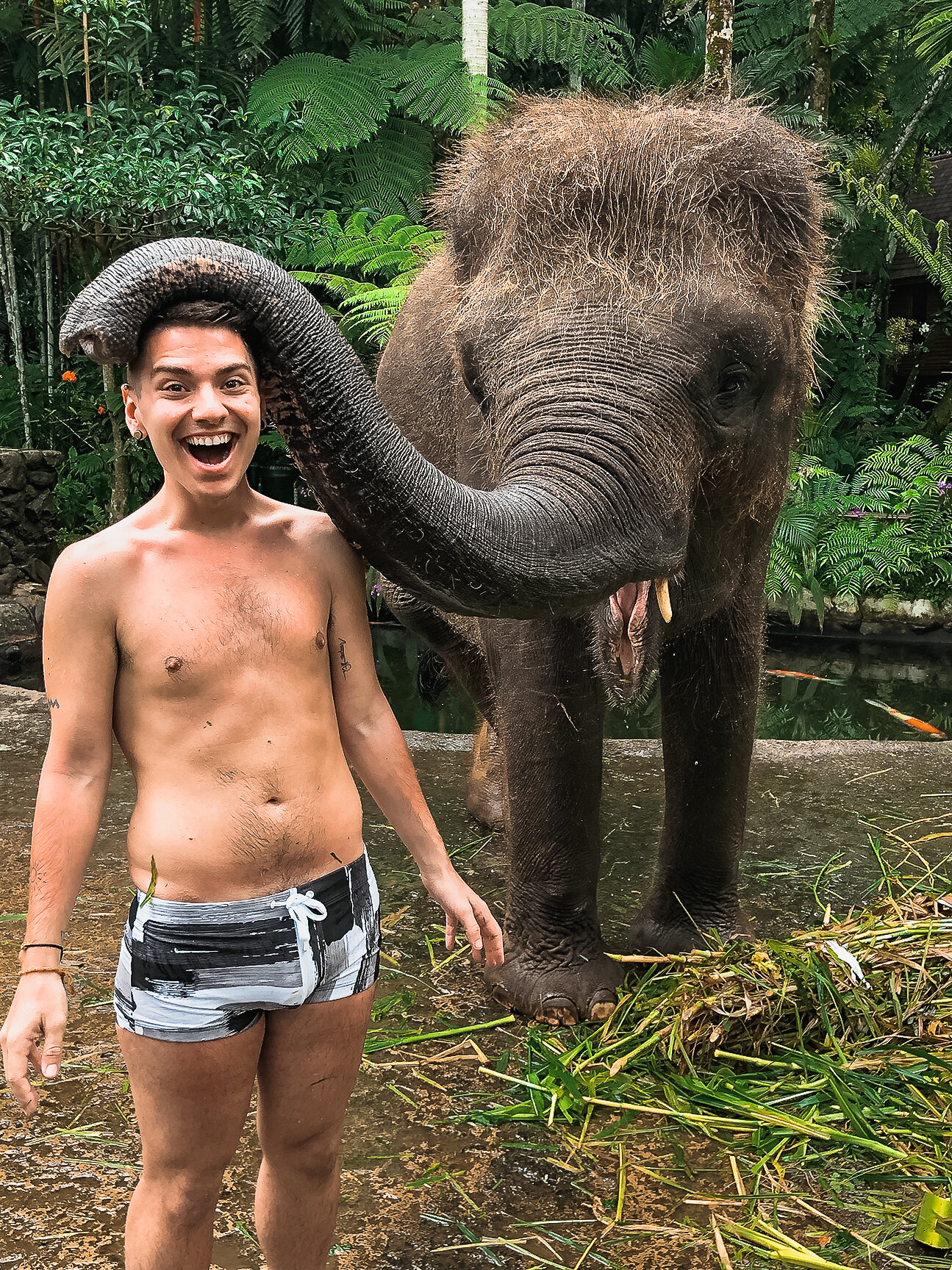
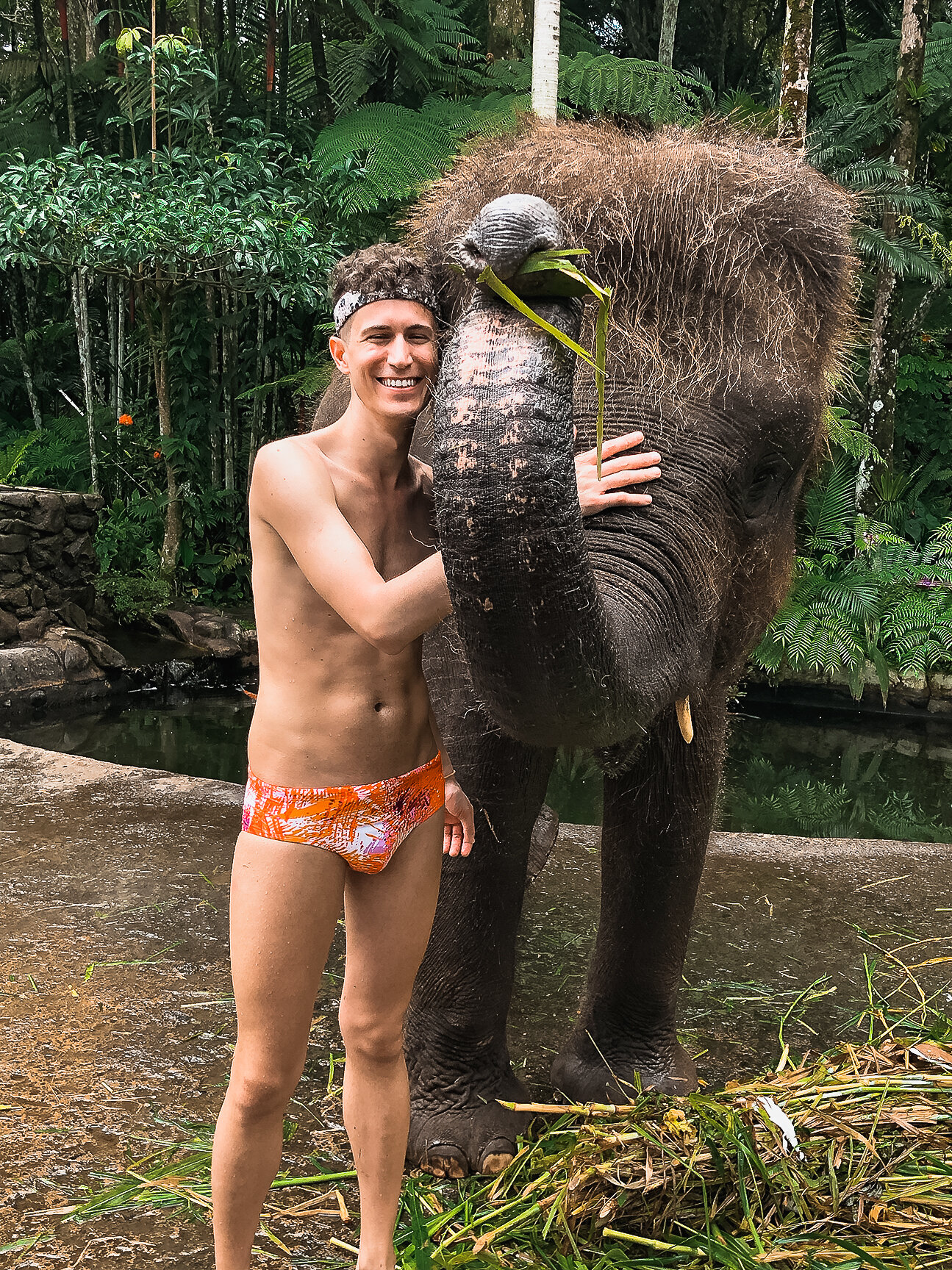
Mason Adventures Elephant Park
We came here to meet, feed and bathe an elephant! After entering the park, you can buy small baskets of produce for 50K Rp ($3.50 USD) to feed the elephants. It’s the cutest feeling as the use their trunks to take the food from your hands! After feeding, we met Risky, the elephant we scrubbed and bathed from trunk to tail. By the end of the experience, we felt like we had made a new friend but also needed a shower ourselves.
Many other visitors came to ride an elephant, something we didn’t ethically agree with and would discourage others from doing. Otherwise, the elephants seemed to be treated humanely, well fed and given space to roam.
Elephants are highly intelligent, creative and social animals. They can even use their trunks to paint. The park has a museum with elephant paintings on display and available for purchase. Needless to say, we now have a painting made by an adolescent elephant named Jegeg hanging in our bedroom.
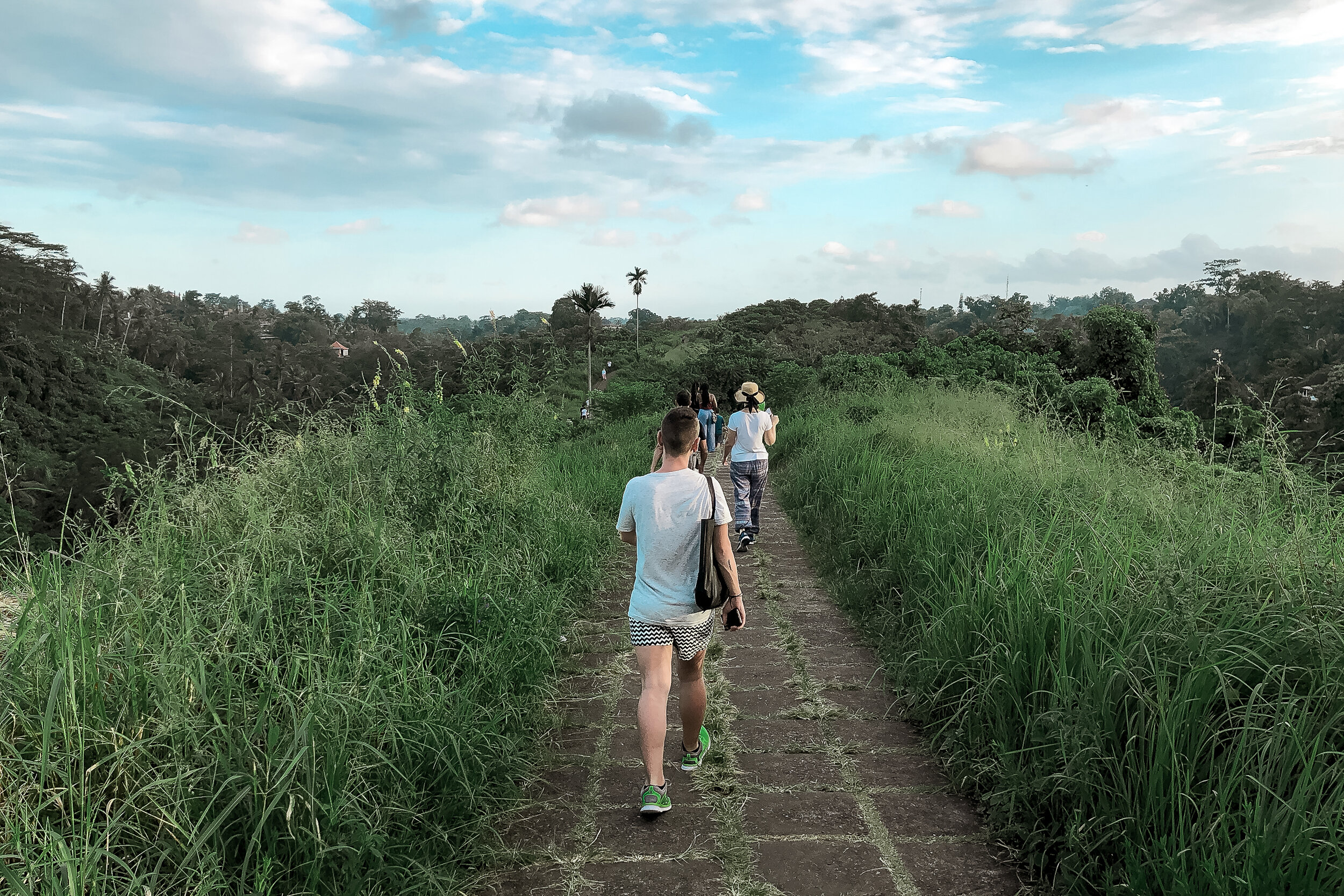
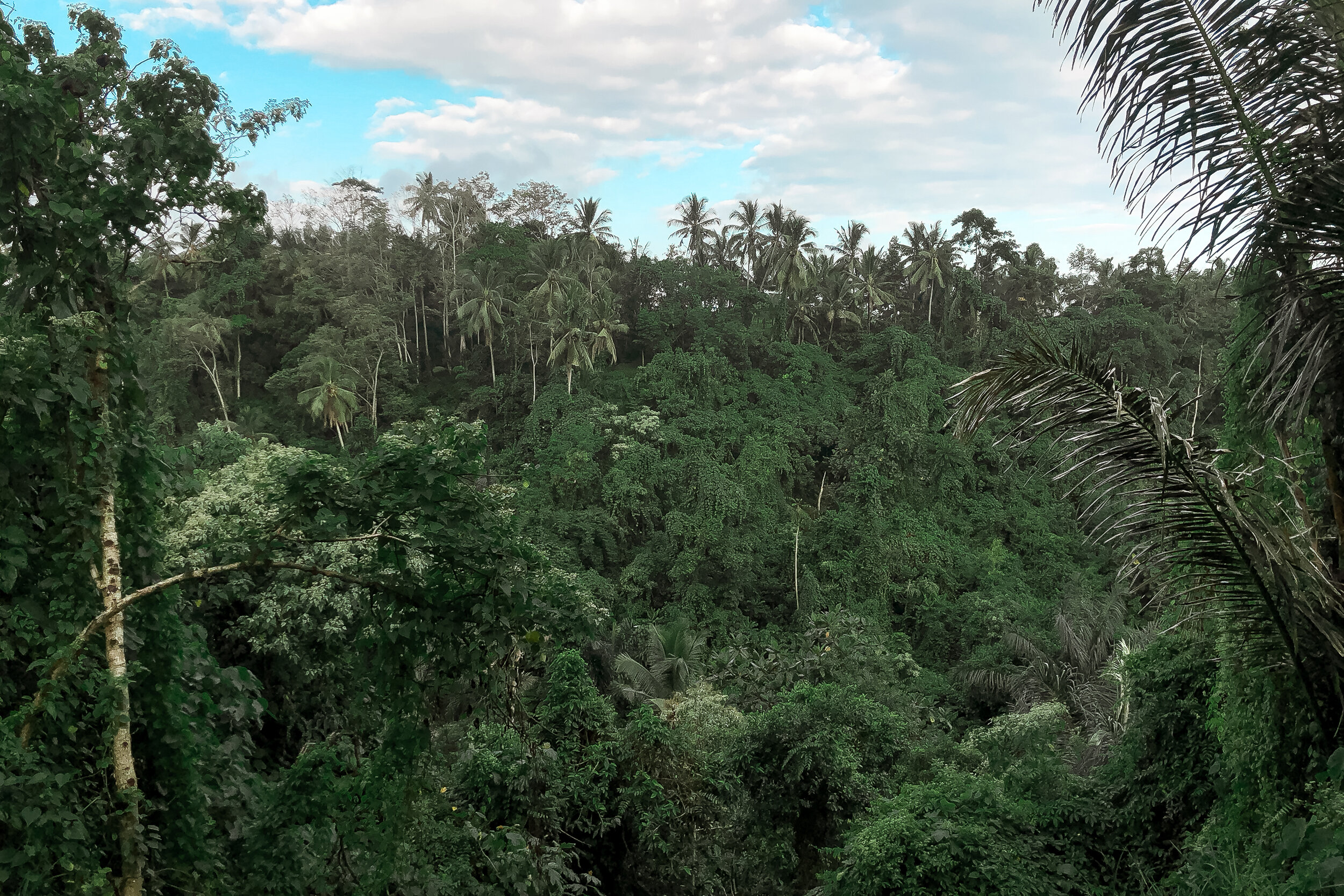
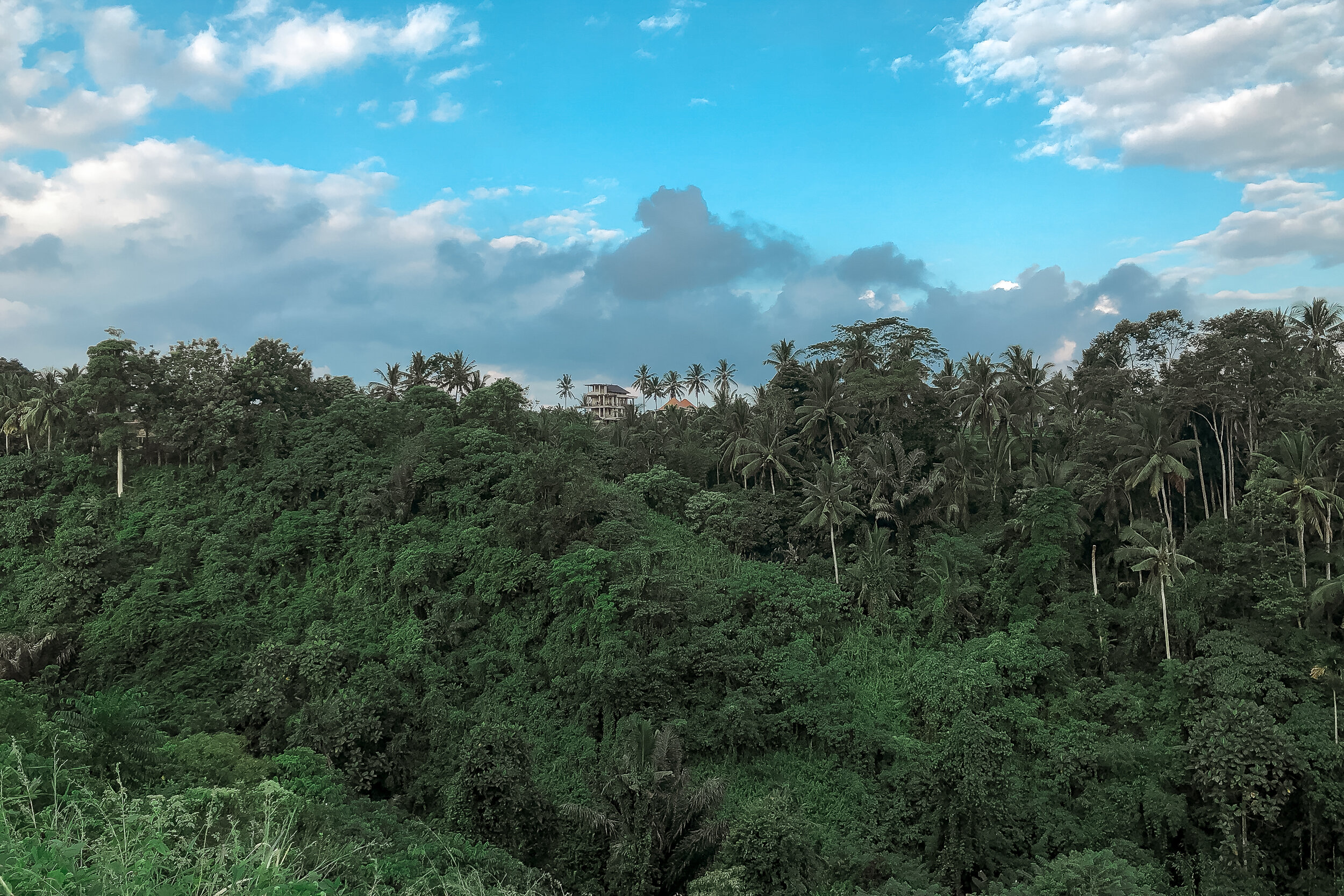
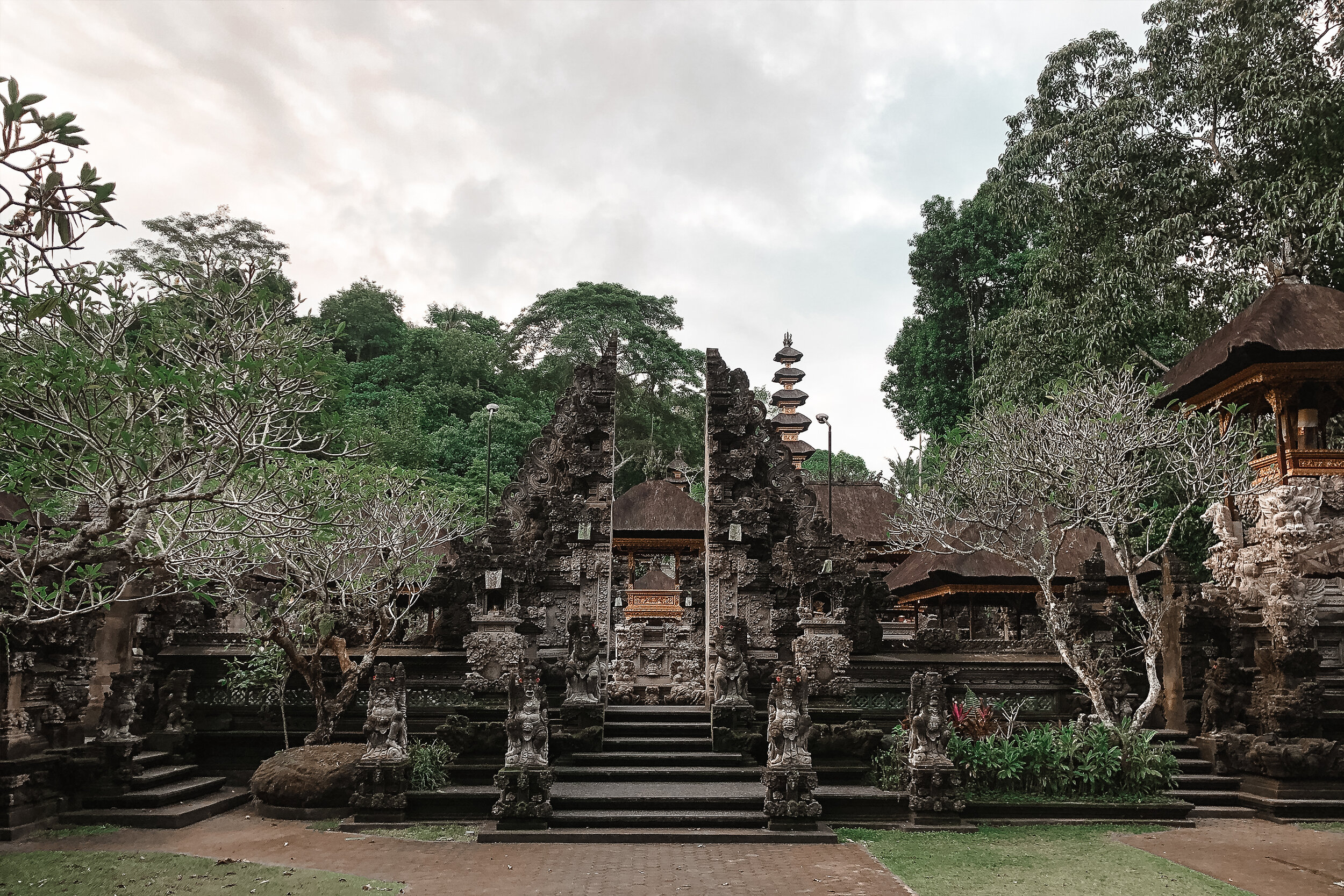
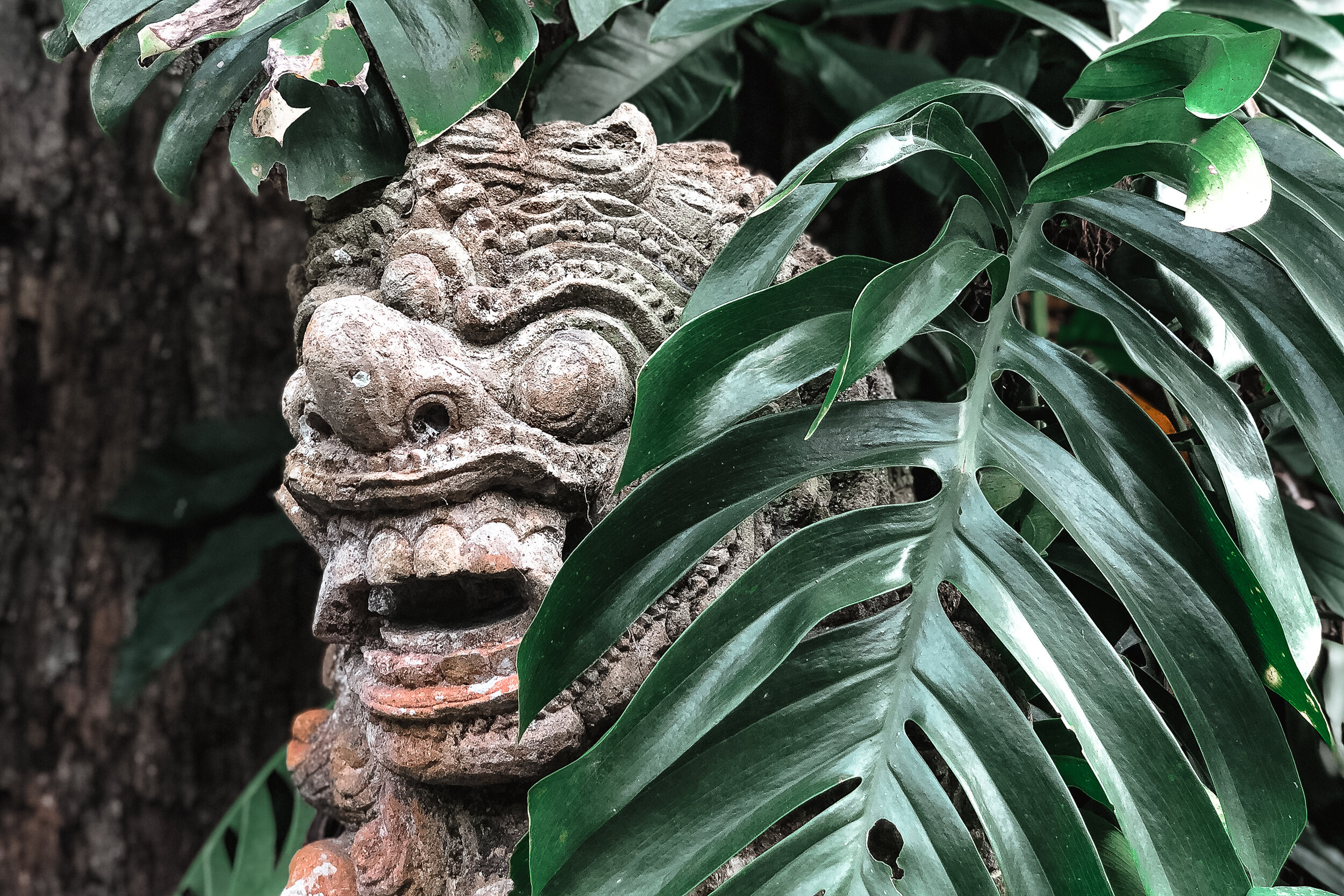
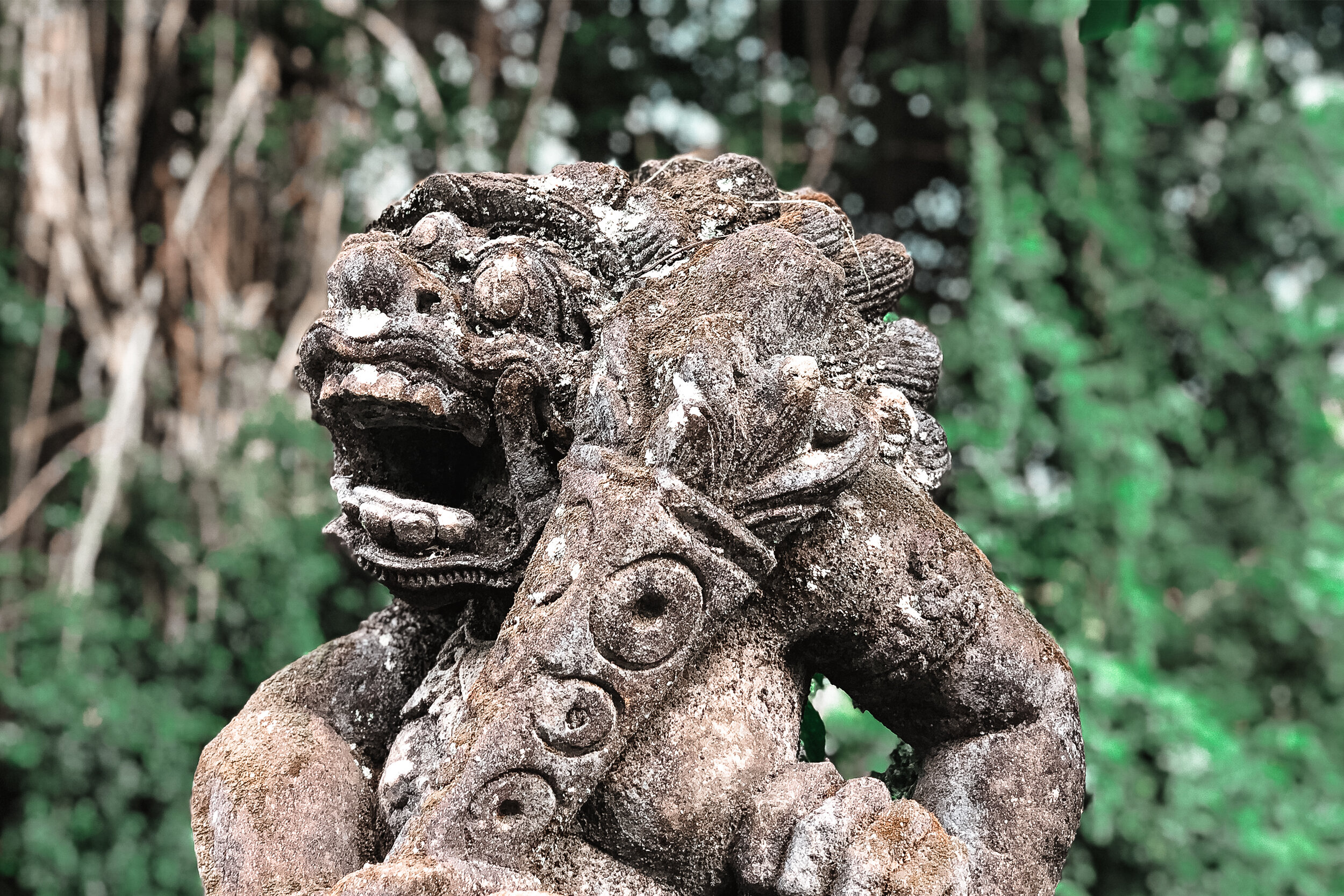
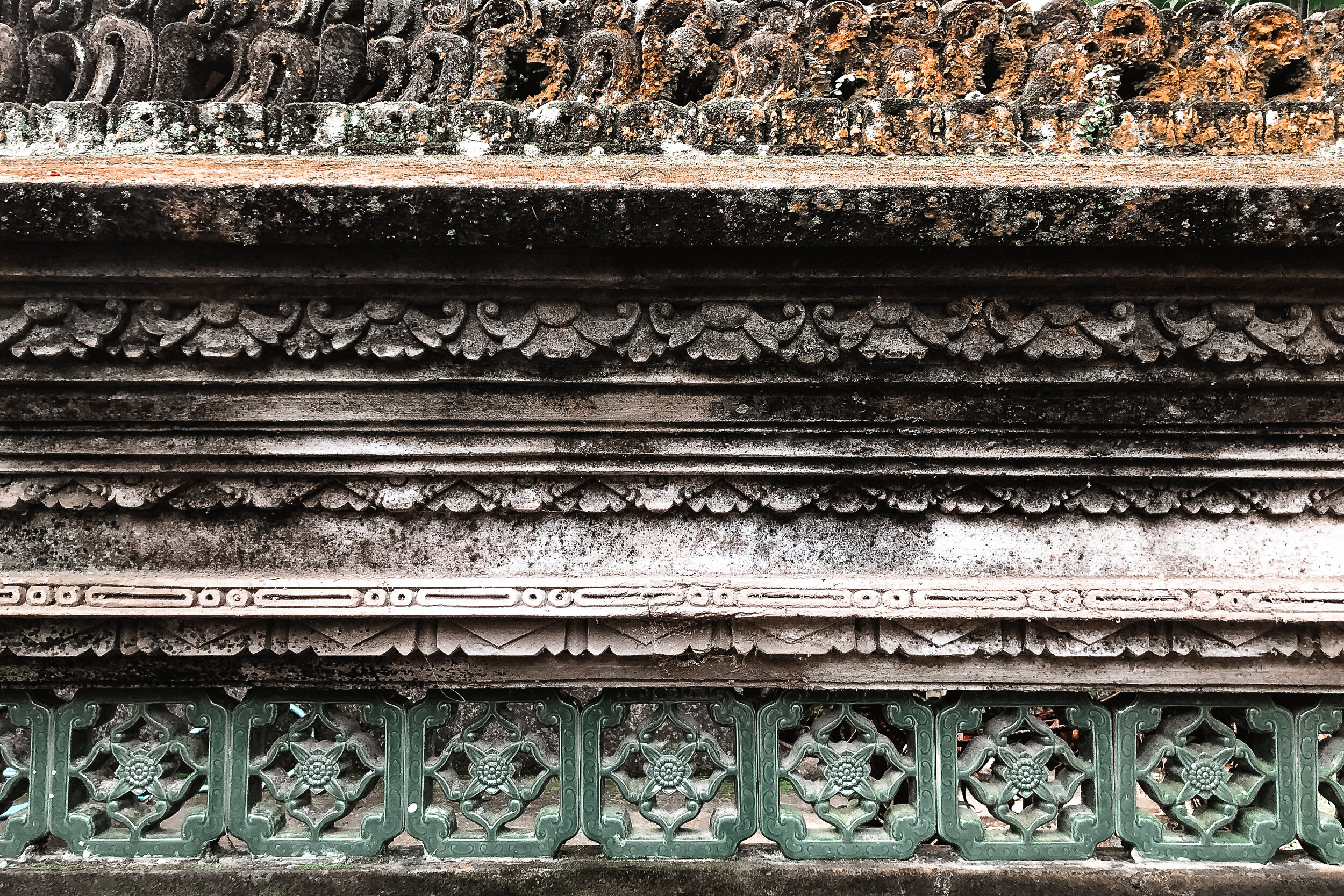
Campuhan Ridge Walk
The walk is an easy, scenic and lush 2km pathway on top of the Campuhan Ridge. To avoid the sun, we walked the path about two hours before sunset ending during golden hour. Enter on the north side, where there are a number of businesses selling fruit, water, Bintangs and massages. End on the south side at the breathtaking ancient Pura Gunung Lebah temple. From there you can walk down Jl Raya Ubud to the city center for dinner.
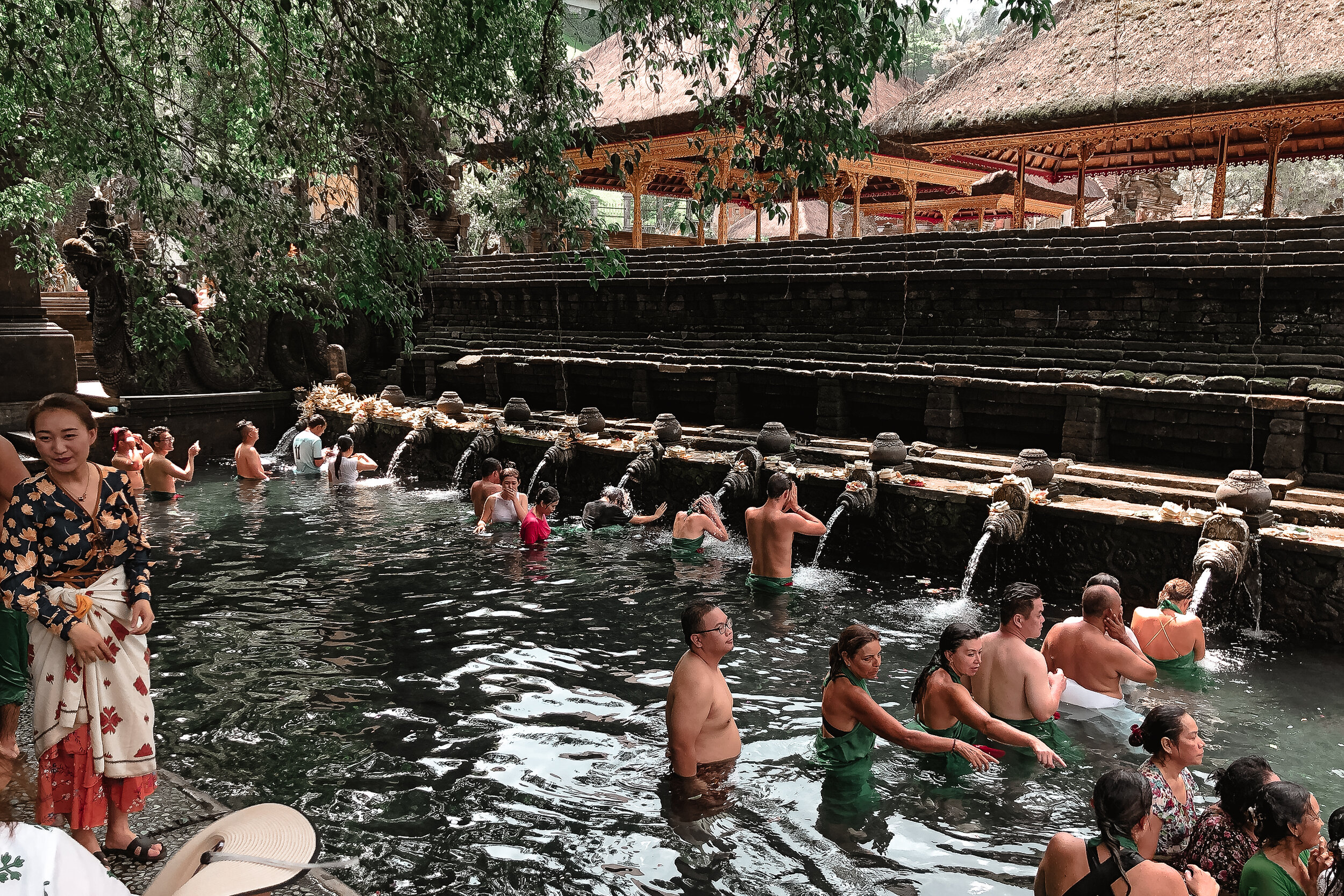
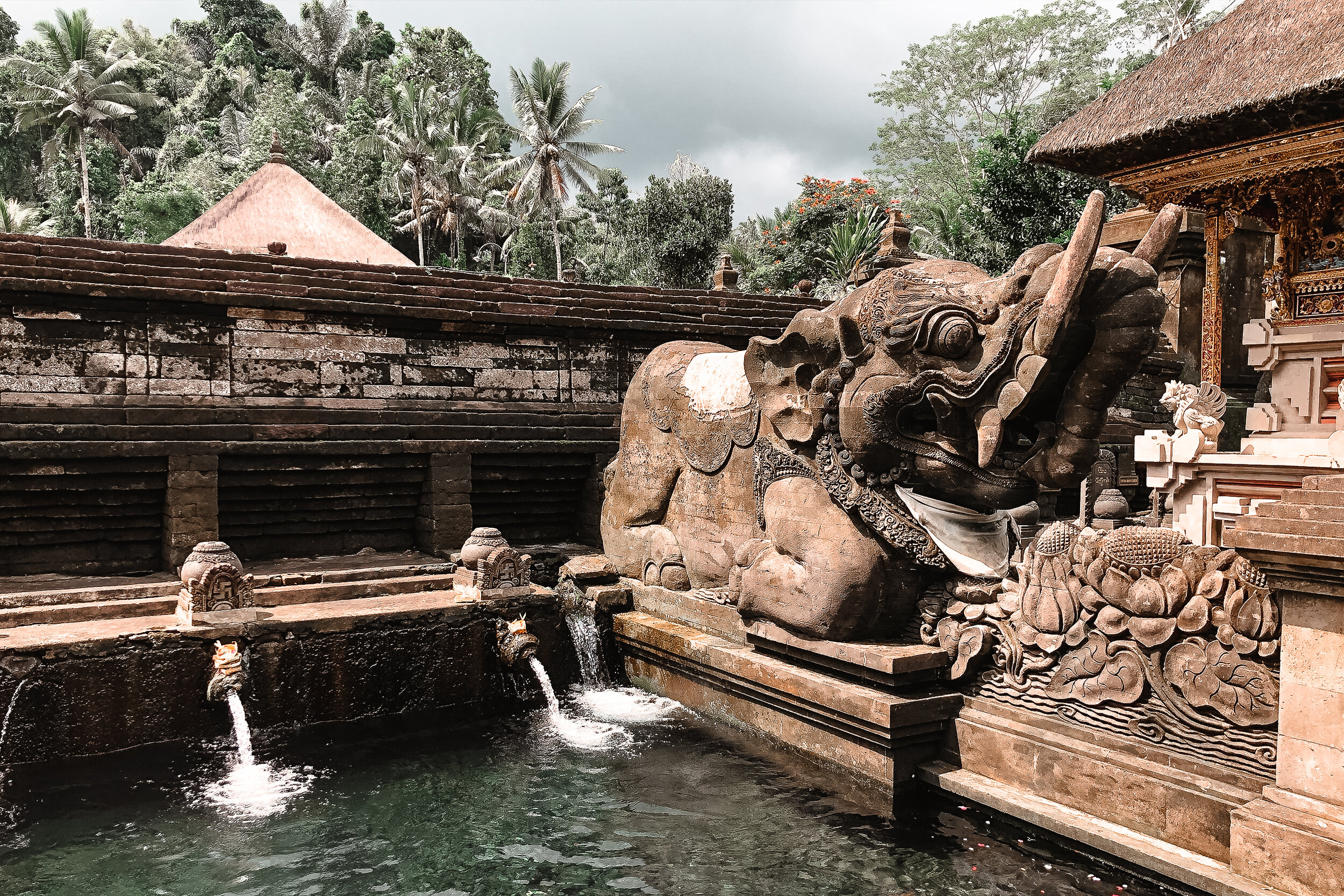
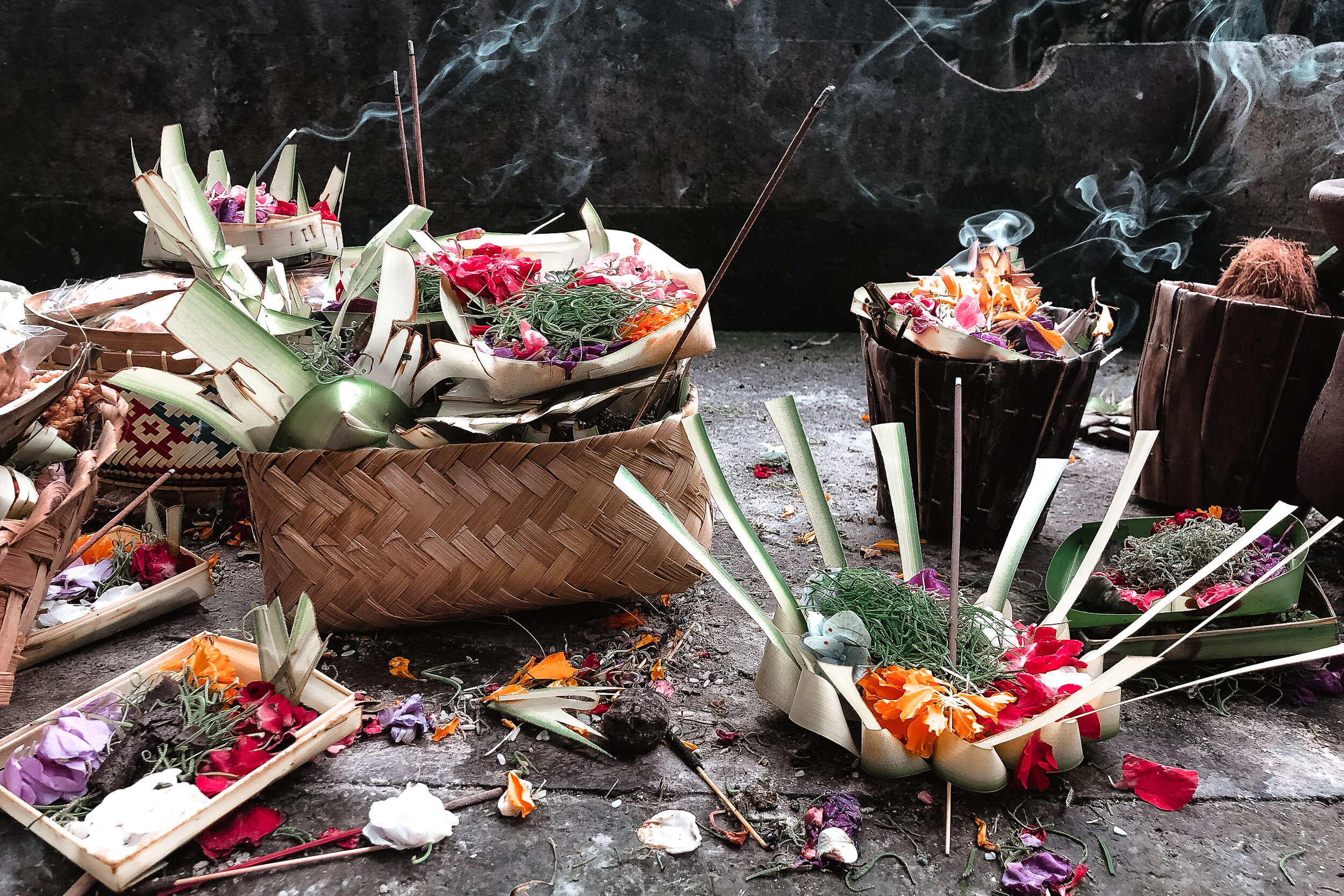
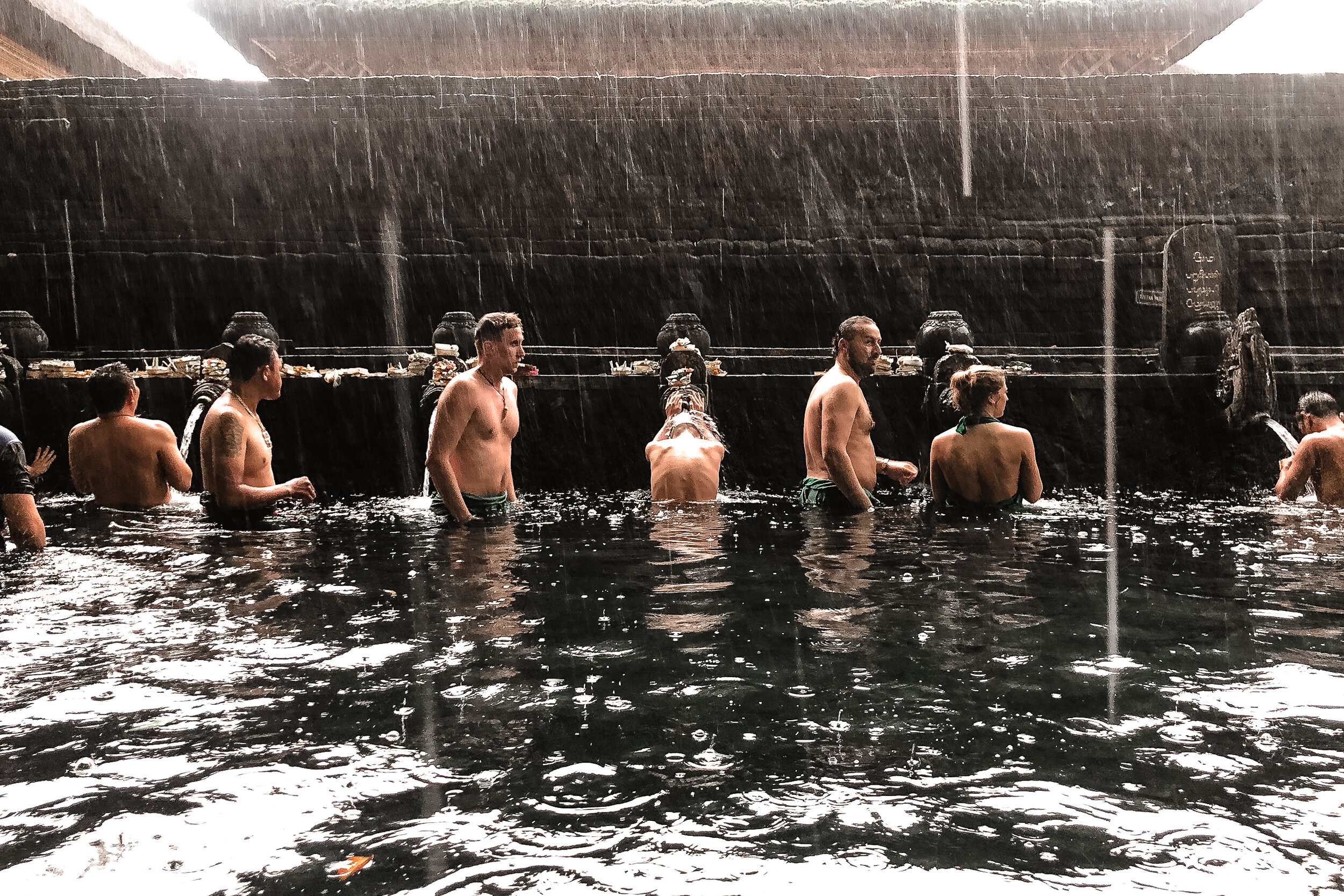
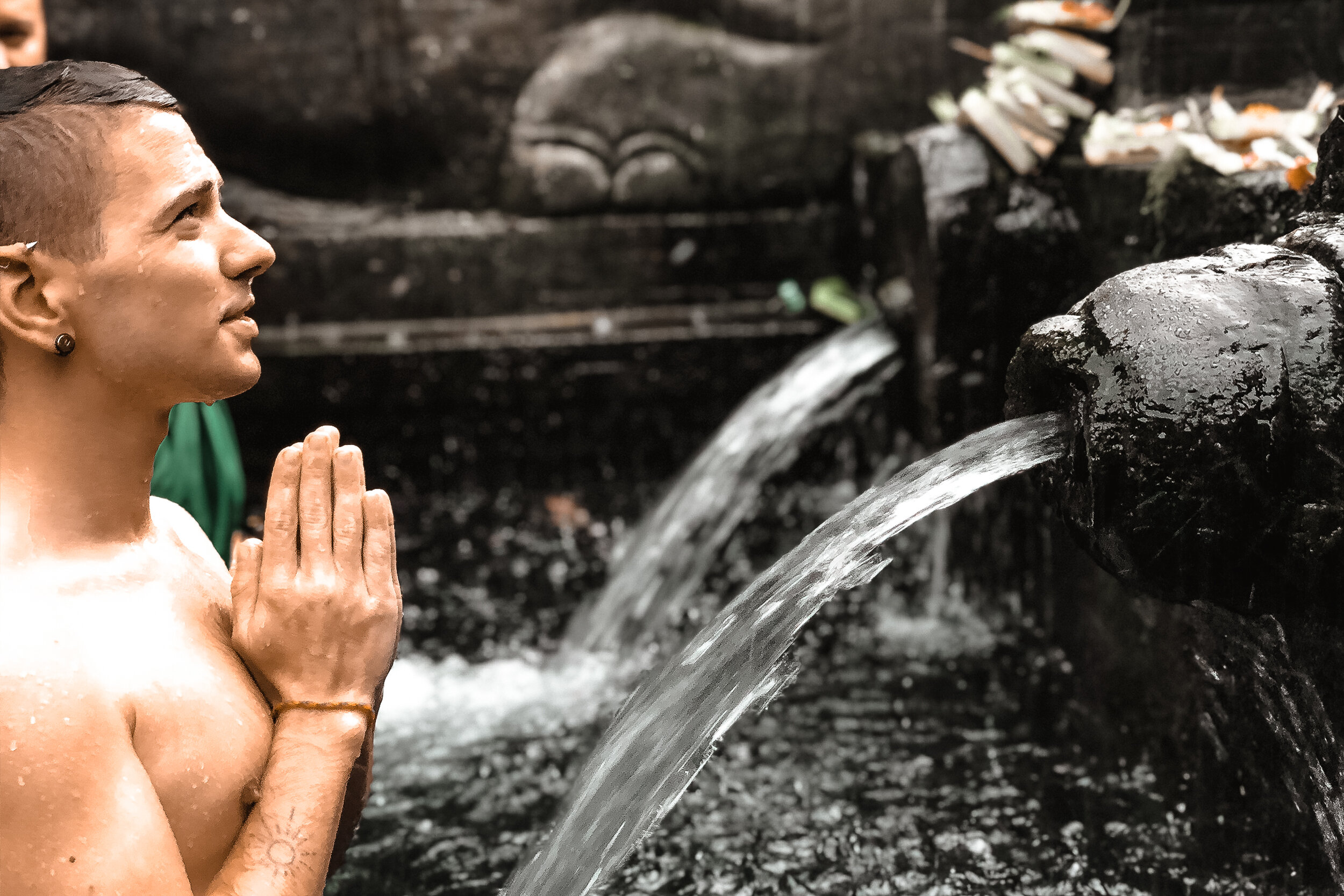
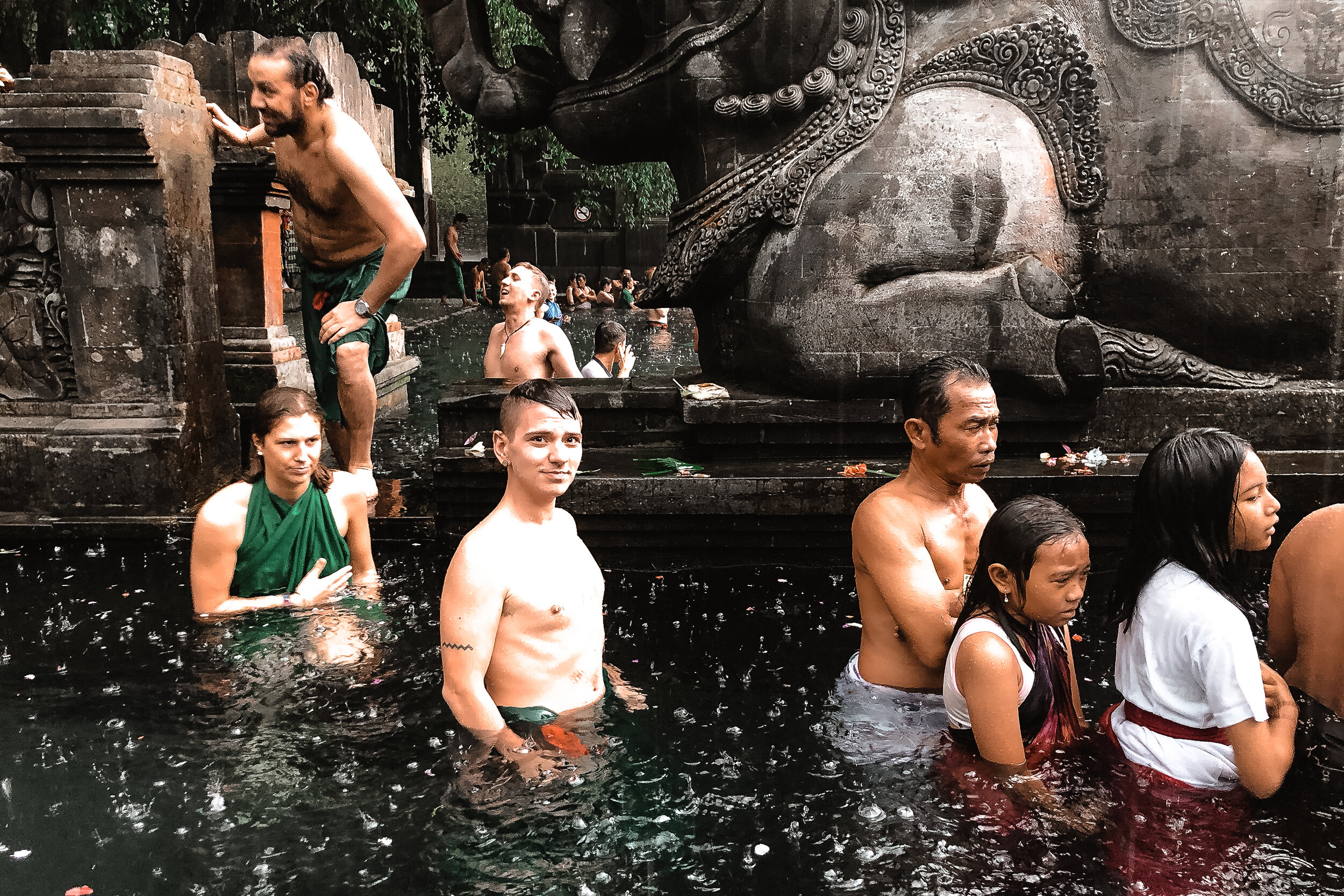
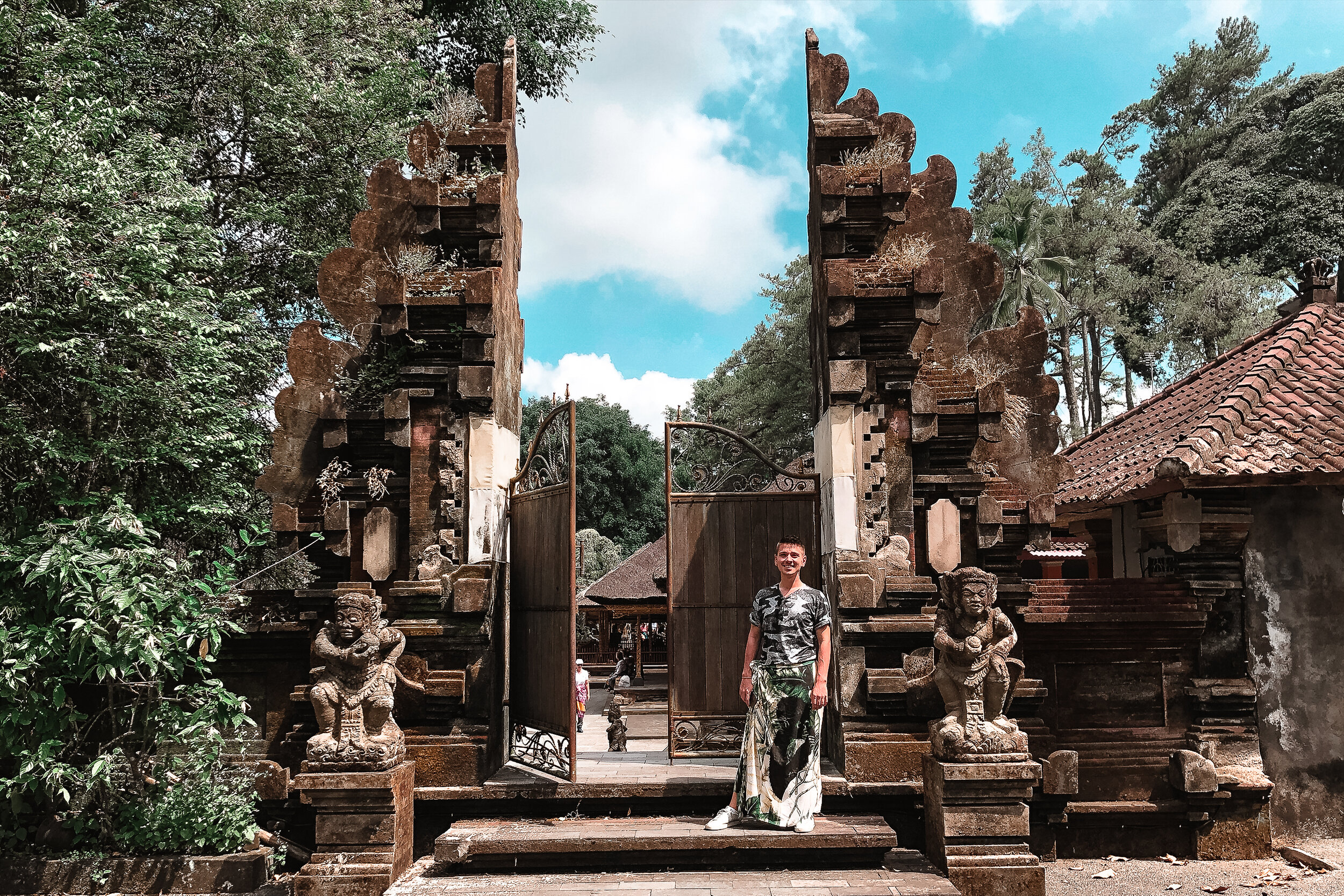
Tirta Empul - Water Temple
A 15th century temple known for its fountains and baths fed by a natural spring. It has a special importance to the Balinese for its purifying and healing waters. The best way to properly use them is to pay a temple guide for a handmade offering and ask them to explain the ritual process and meaning behind it. It’s well worth the experience to step out of your comfort zone, experience and reflect on whatever you’re thankful for.
We visited Bali during the dry season. Coincidentally, while visiting the water temple, a storm rolled in and lasted for the rest of the afternoon. It was the only time it rained during our two week trip.
What to Bring
A Sarong. Like with many temples across Bali, you need a sarong to cover up with before entering. They’re available to rent at Tirta Empul if you don’t have one.
A towel. To dry off with after cleansing in the waters
A lock. To secure your belongings in the lockers.
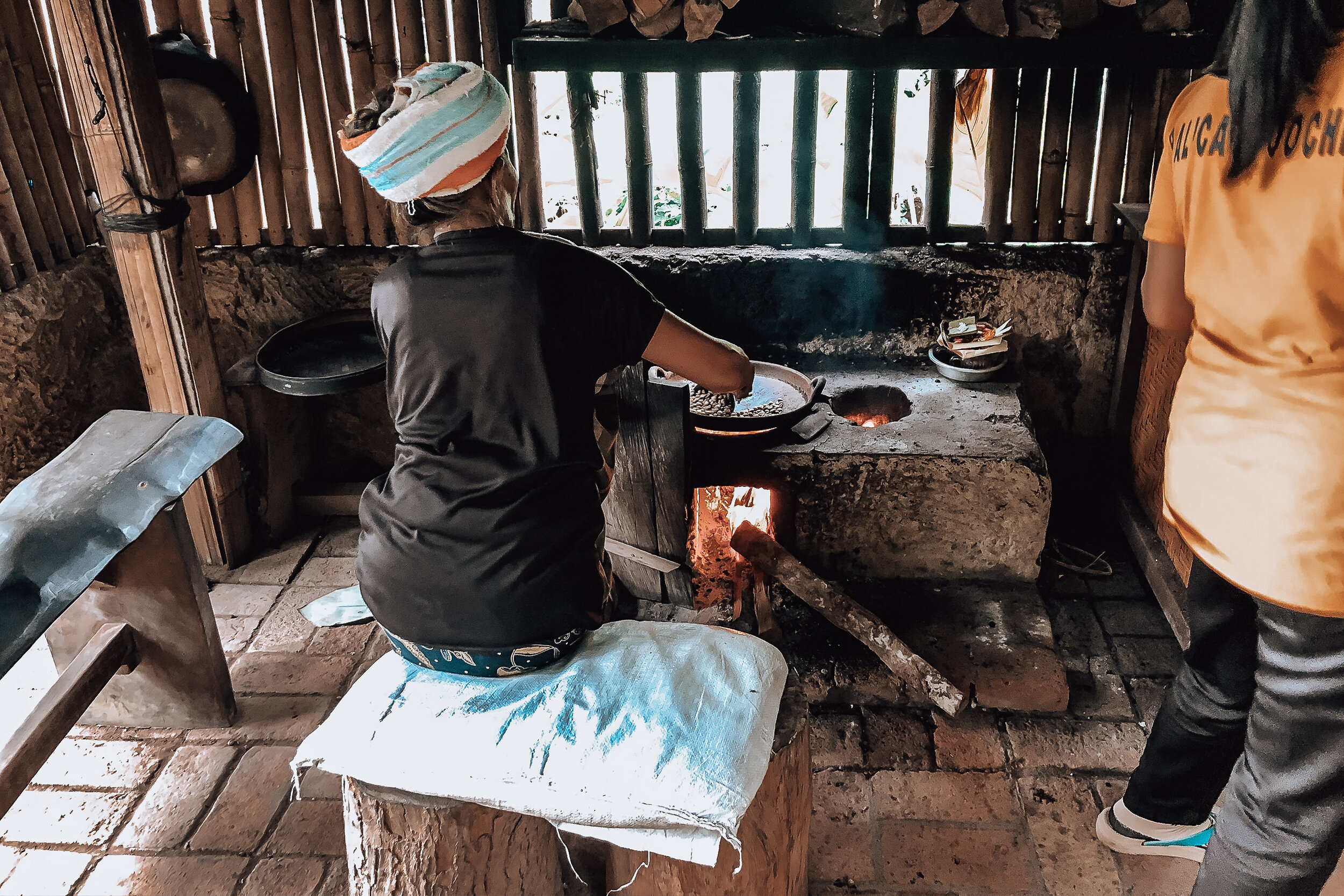
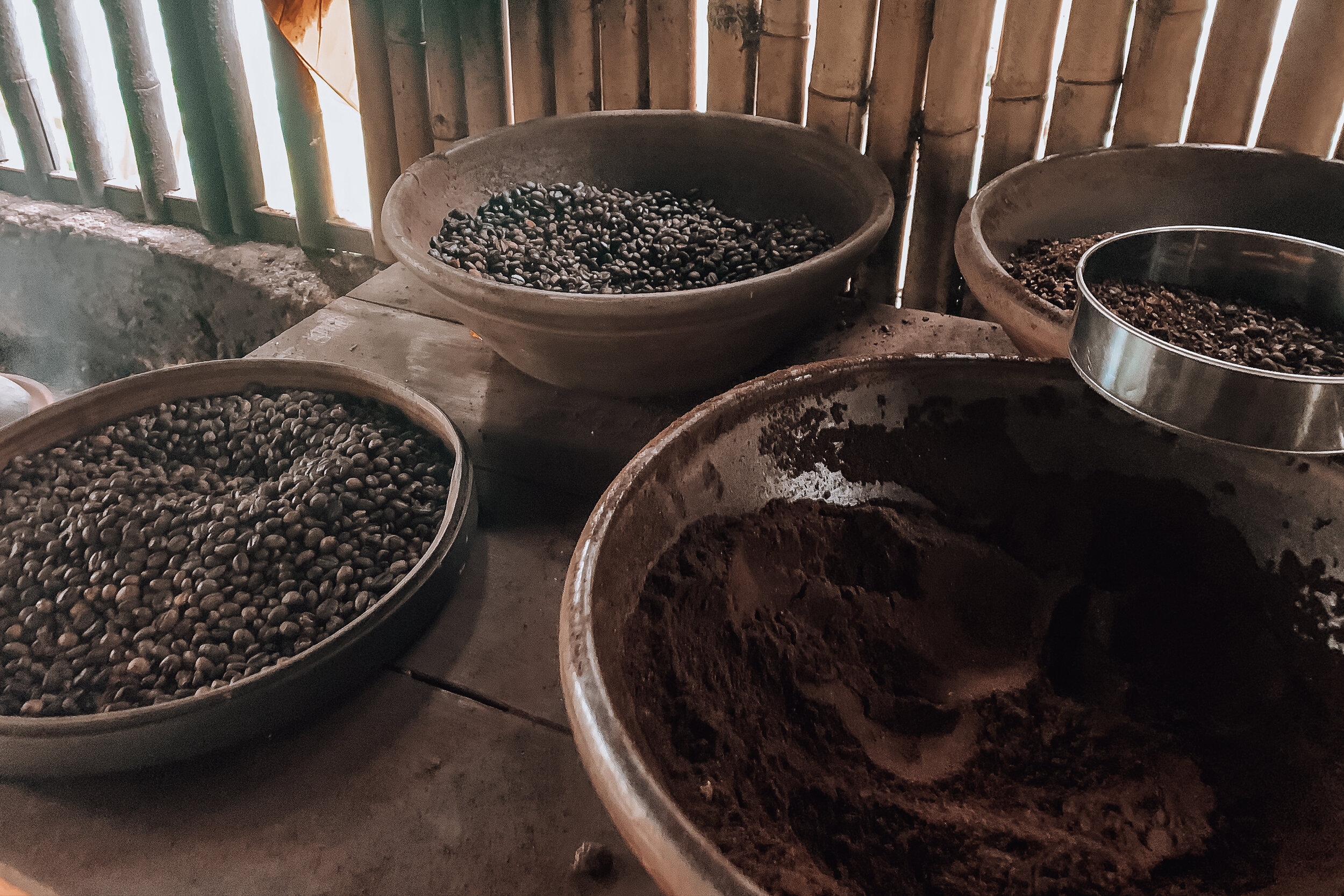
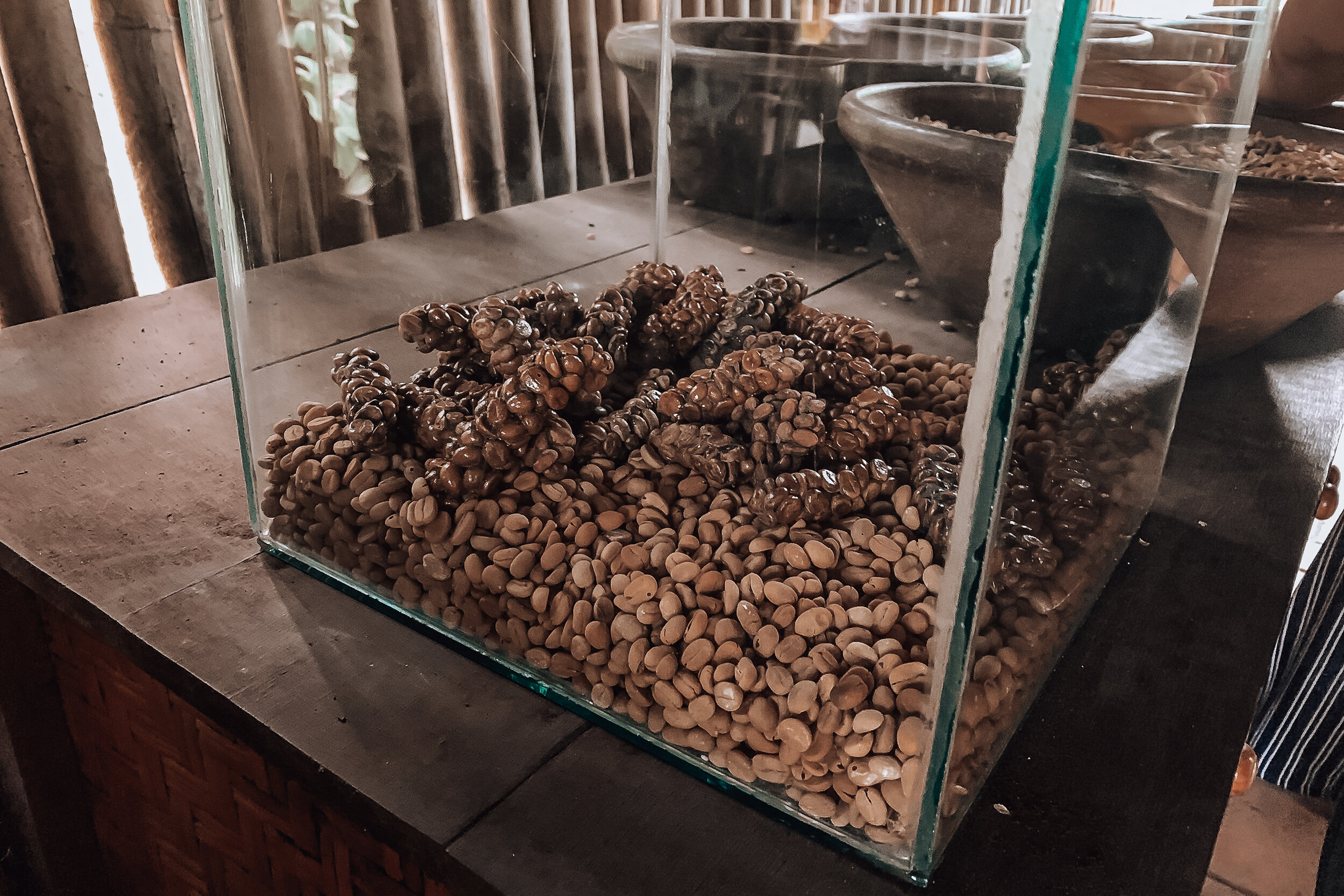
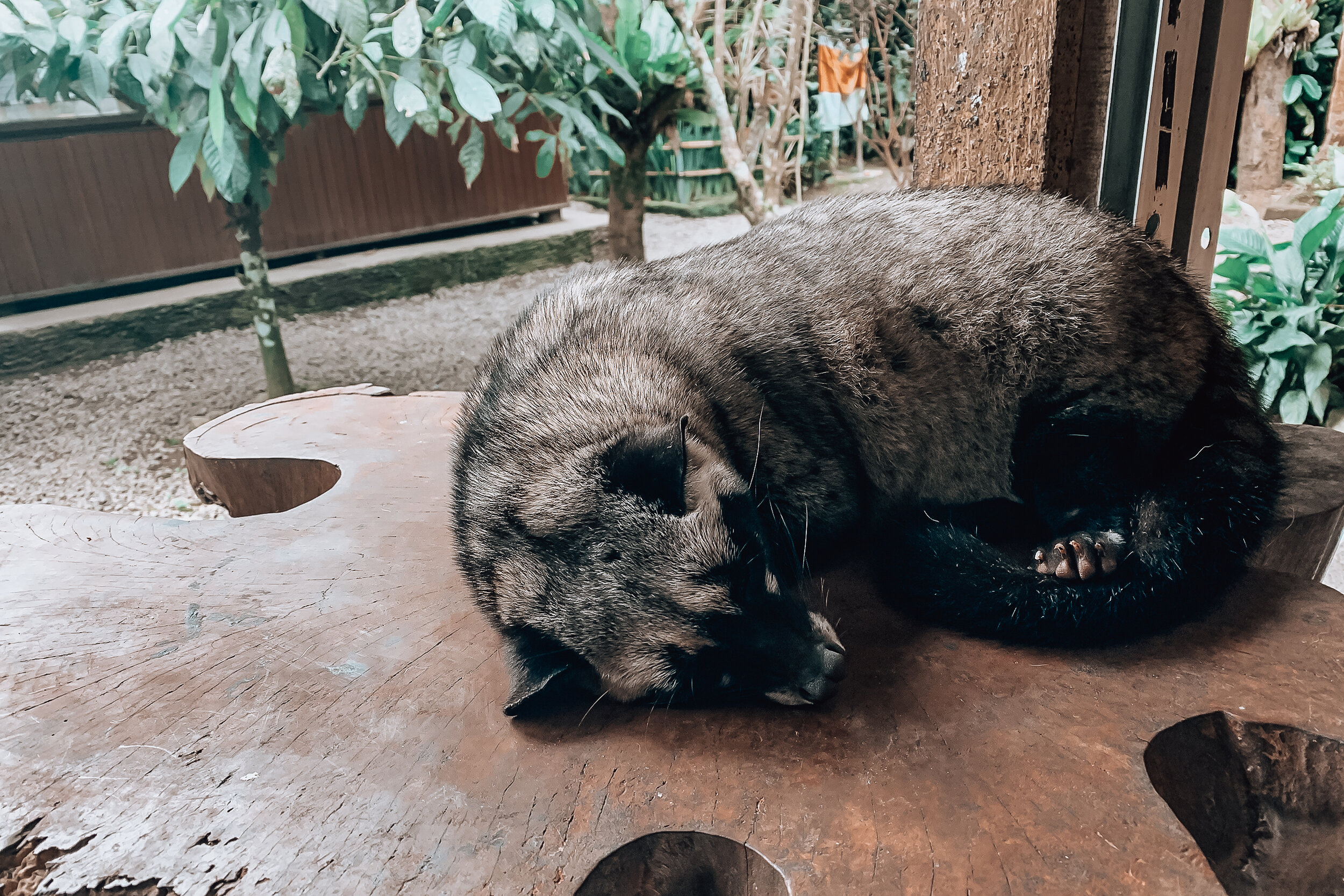
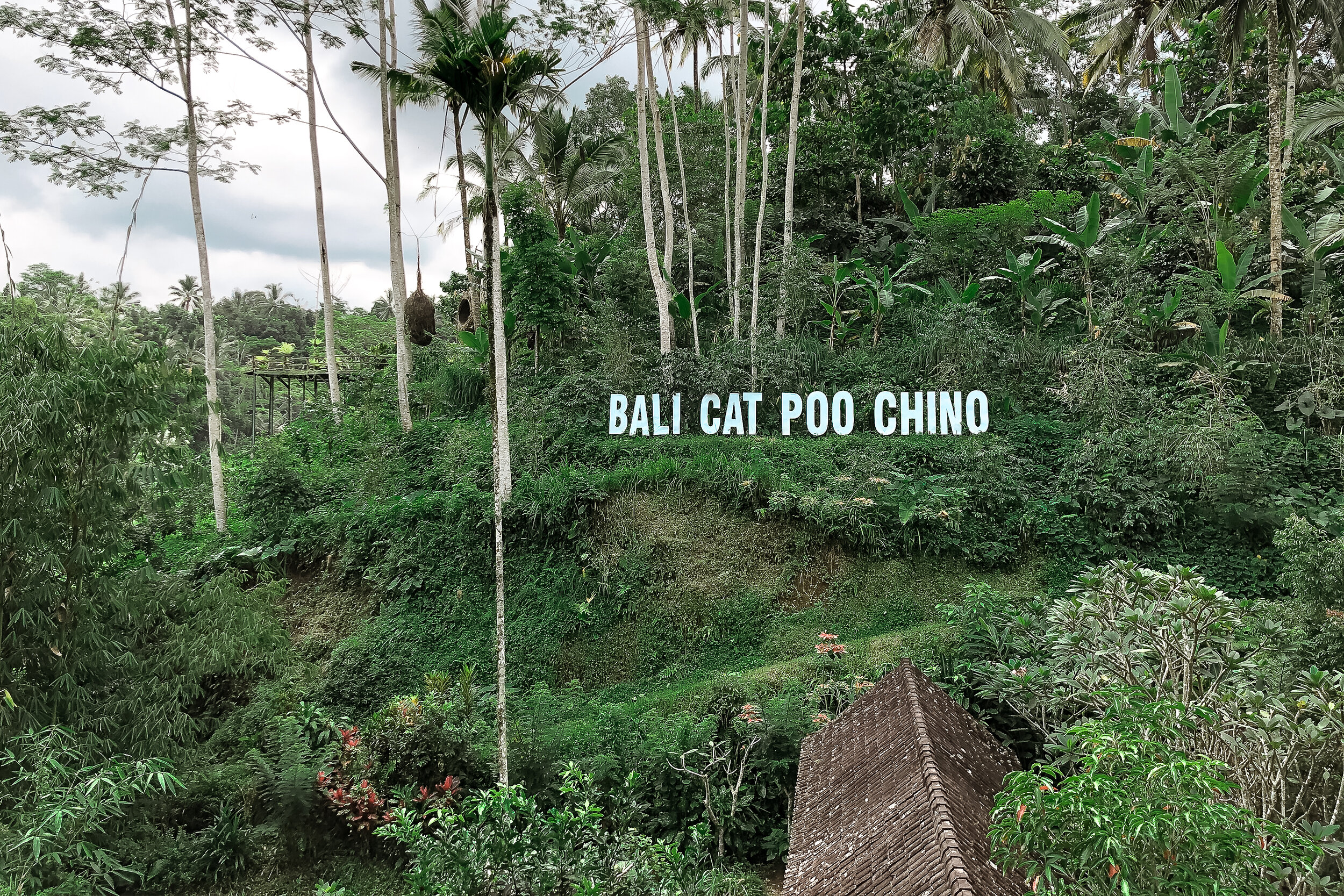
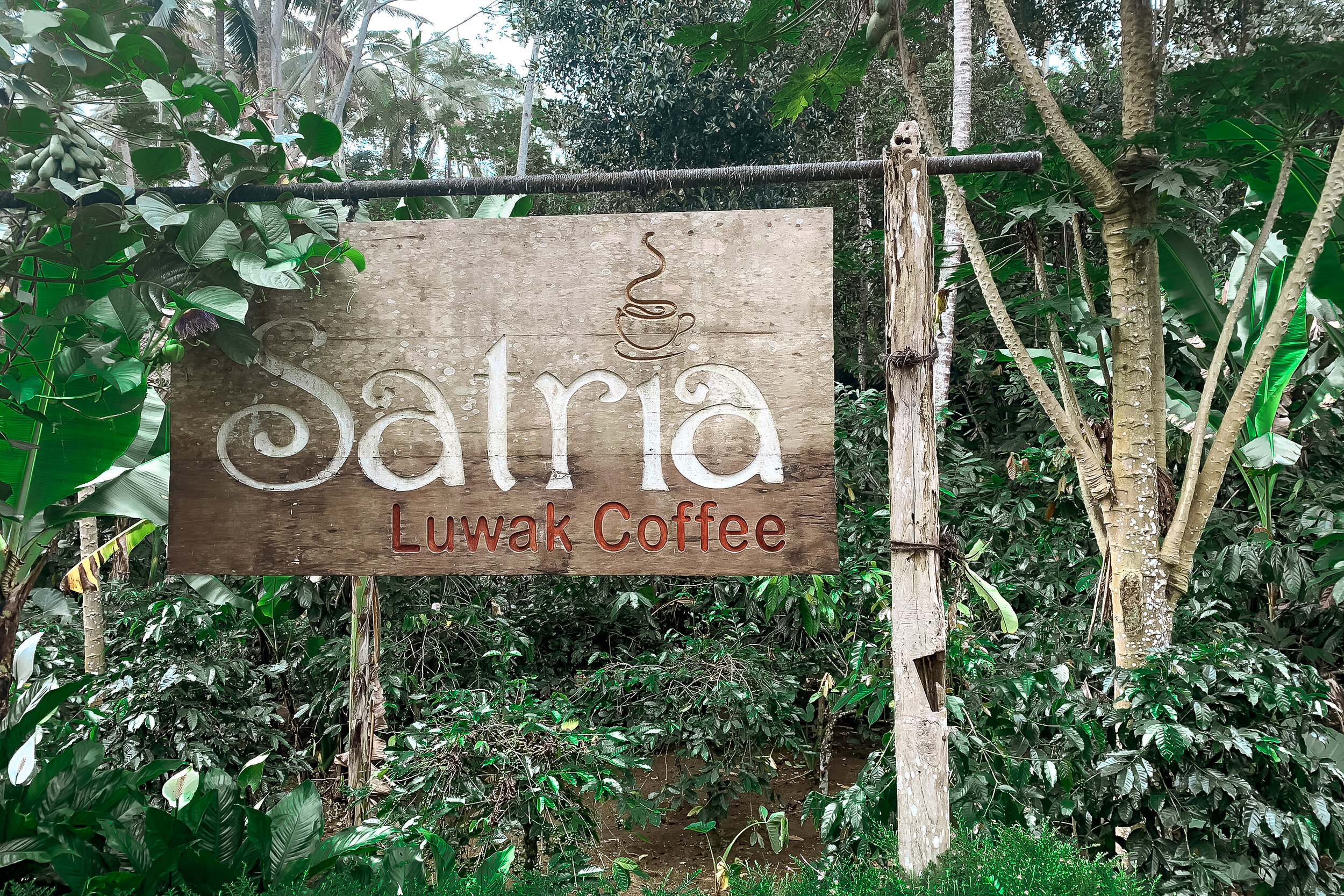
Satria Coffee Plantation
Famous for Luwak Coffee. If you’re unfamiliar, the coffee beans go through quite the process before becoming coffee. The fruits containing the beans are eaten by civets, a nocturnal cat-like mammal. The civets then digest fruit and poop out the beans. The beans are collected and roasted in small batches before being ground and turned into coffee. It’s an unappealing process but does result in a rich, mellow and flavorful brew worth trying at least once.
Museums
There are a number of museums showcasing Balinese art, artifacts, carvings and architecture throughout Ubud. The museums themselves are as much about the grounds and their temples as they are the artwork and artifacts within.
The three most important ones are:
Agung Rai Museum of Art (ARMA)
Museum Puri Lukisan
Neka Art Museum
We visited ARMA during the mid afternoon and were surprised to find the museum mostly to ourselves. We spent a few hours touring the galleries, walking through the grounds and talking with a few artists currently carving sculptures and painting in the gardens.
Restaurants
In Ubud, we learned that it’s customary to remove your shoes before entering most restaurants and business. You’ll often be cued by a row of shoes outside the business before entering. If you’re unsure, do it anyway. Other than Akasha Restaurant nearby our eco-dome and a few street meals, here are a few places we came to eat and drink:
Mudra
A really cute cafe nearby the Monkey Forest offering the most stunning Bali bowls on the island.
Hujan Locale
Slightly higher-end contemporary Indonesian cuisine with colorful and flavorful dishes as well as artisan cocktails. We shared a few appetizers end enjoyed the prawn and crispy whole fish as mains.
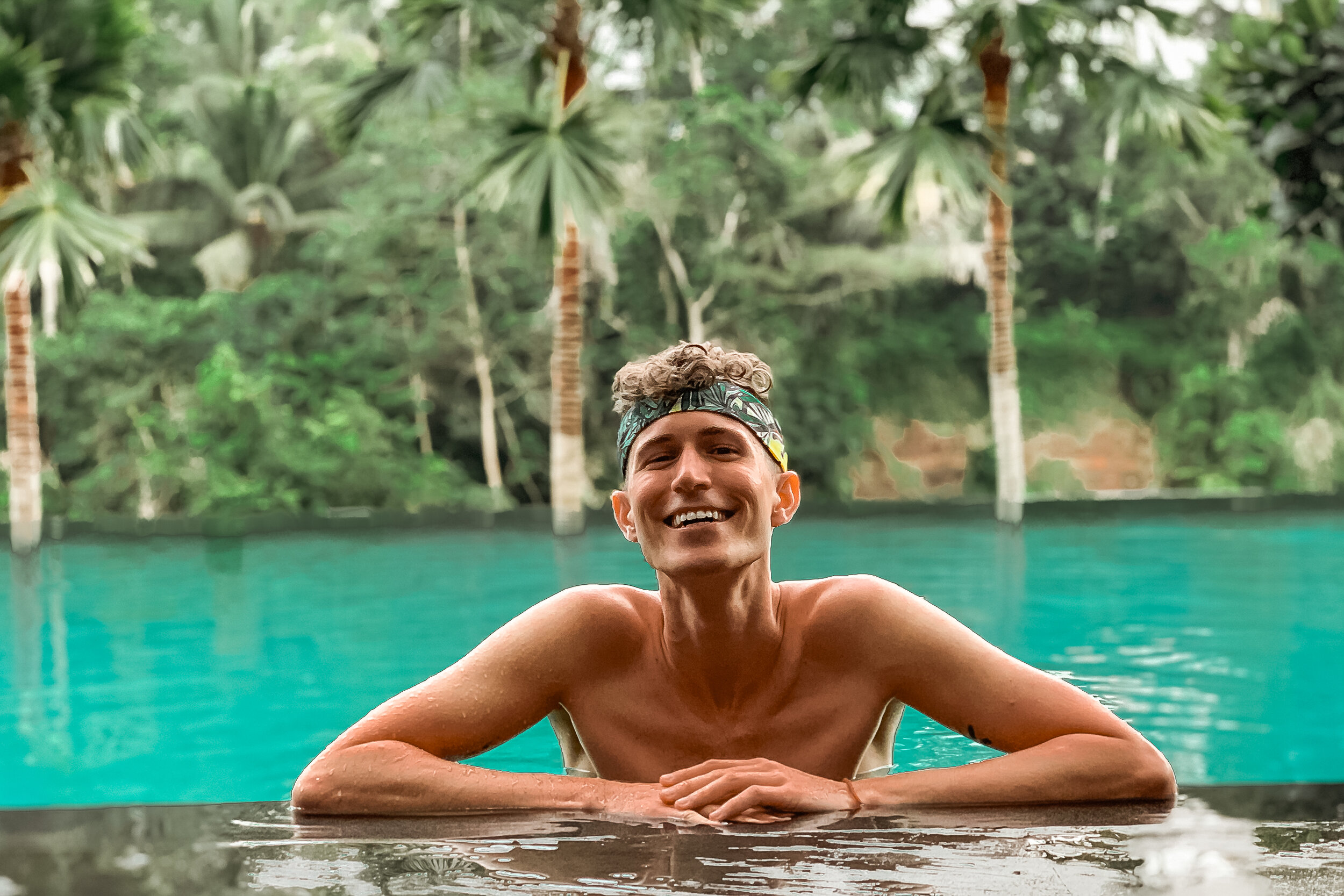
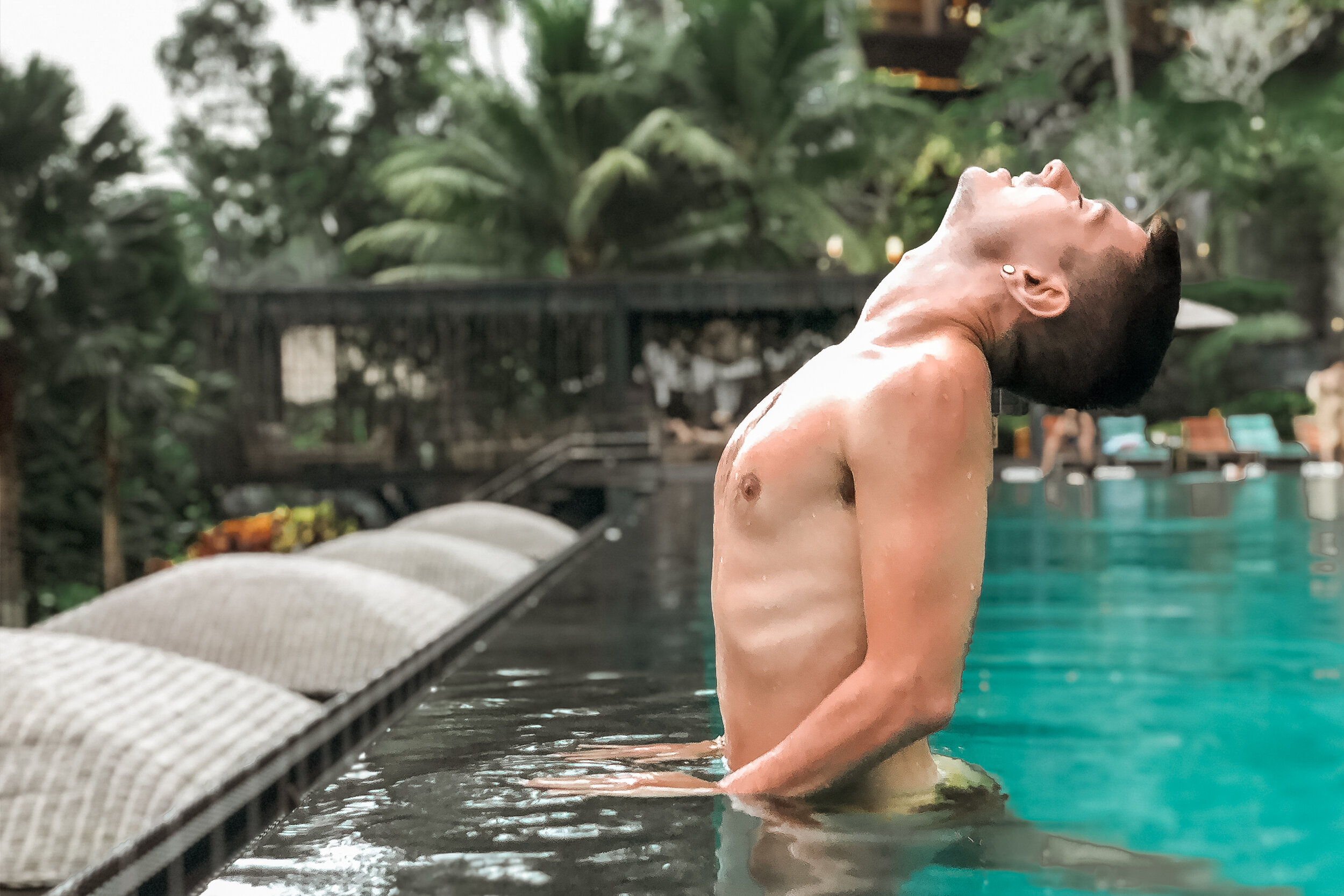
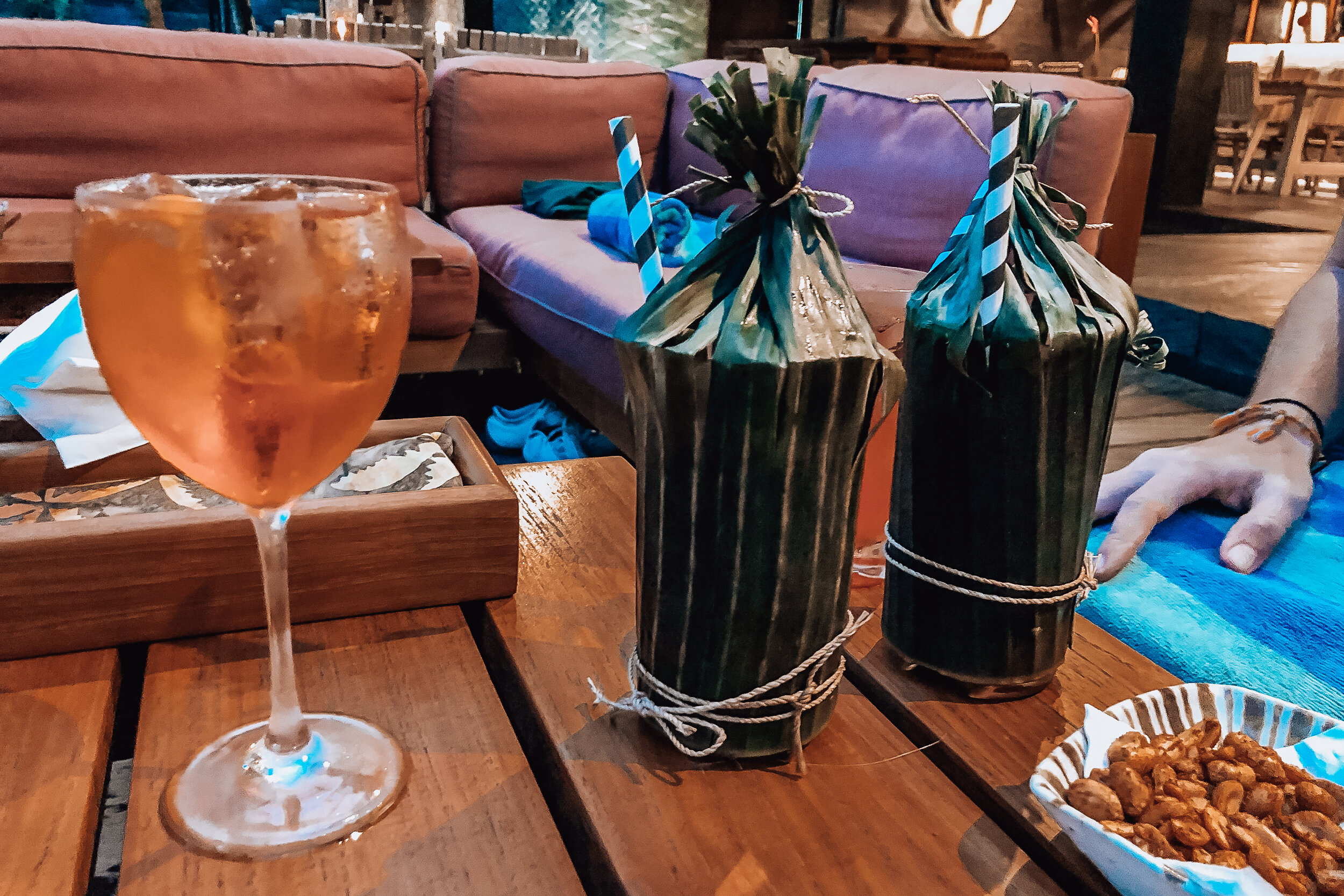

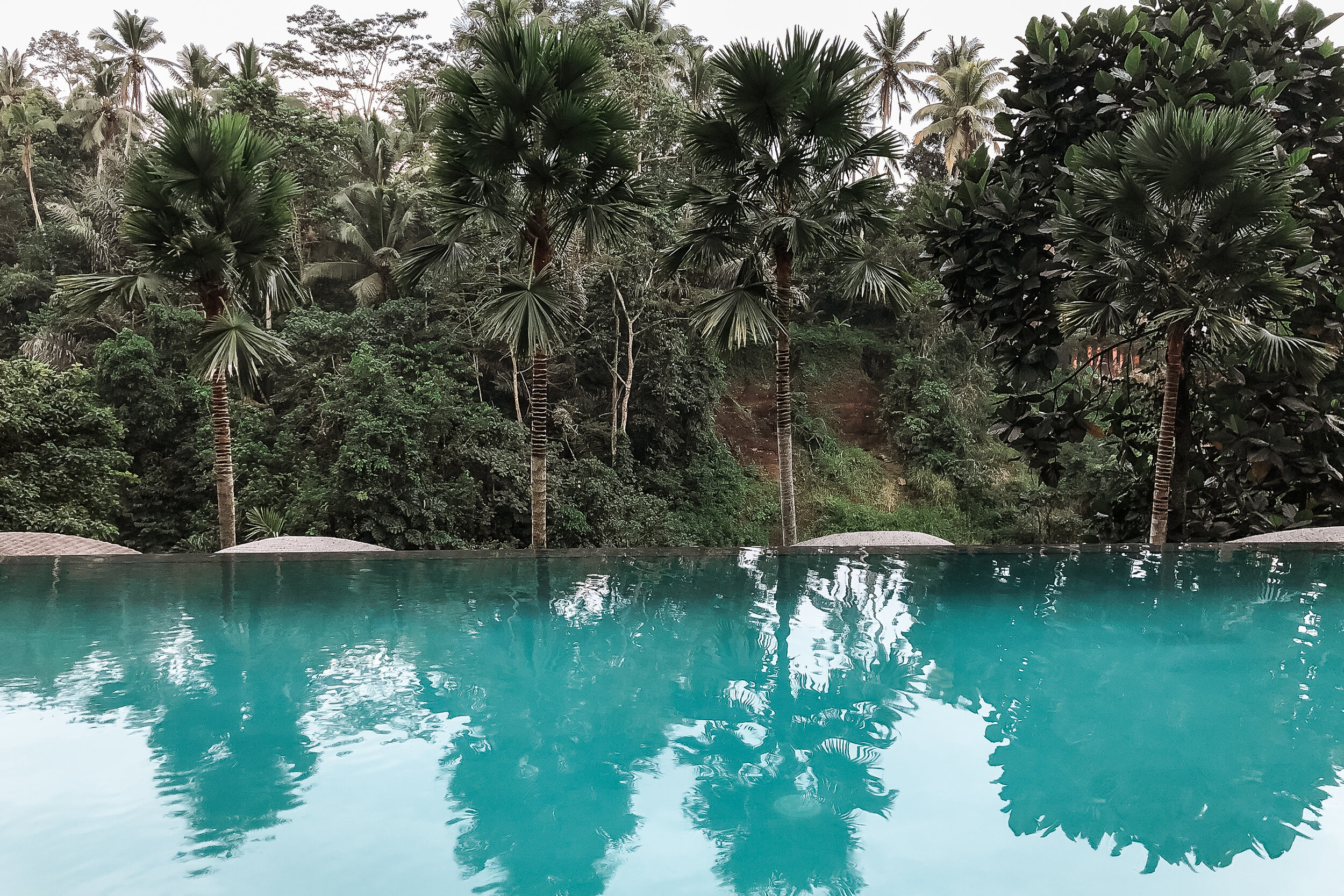

Jungle Fish
The best way to describe this place is a beach club in the middle of the jungle. The restaurant has an infinity pool overlooking the lush rainforest and multiple levels. The pool bar offers a selection of small plates and 2 for 1 drinks. We sampled every cocktail on the menu falling in love one wrapped in banana leafs.
Good to Know
Currency & Pricing
You can easily be a millionaire in Bali. 1,000,000 Rp converts to about $71 USD.
Money is qualified in the thousands. Many restaurants and businesses will drop the extra zeros on menus and price tags. For instance something costing 56,000 Rp may be listed as 56.
Carry a lot of smaller bills (5K, 10k and 20K) with you for donations and small fees.
Tipping is usually included in the bill under service. Anything extra is not expected.
When exchanging cash or cards, use both hands out of respect.
Safety & Awareness
Bali is generally a safe place to travel too.
The biggest dangers in Bali are traffic and natural disasters.
You need to be alert and careful if driving a scooter or crossing a road.
Bali is a volcanic island and prone to earthquakes. The safest thing to do if one happens is to move to an open area. If you’re in a building, move to the center of a street. If you’re hiking or under palm trees, move to a clearing to avoid falling rocks and coconuts. Always cover your head.
Language & Phrases
Bahasa Indonesian is the official language in Bali however many people know English.
People will often introduce themselves and bow their head when meeting you. You should reciprocate the response and gesture.
Common phrases:
Sukseme = Thank You
Sama Sama = You’re Welcome
Selamat Pagi = Good Morning
Selamat Siang = Good Afternoon
Selamat Sore = Good Evening
If we had more time…
Ubud was one of our favorite places in Bali, so much so we dedicated a full guide to it! Though we spent nearly a week here, there is still so much more left to experience. Here are a few of the things we plan to do when we return. Read our Coastal Bali Guide for more things to do and see around the island!
Pura Ulun Danu Bratan. Canoe between the floating water temples on Lake Bratan
Pura Taman Saraswati. A palace water temple surrounded by a large lily ponds where the traditional Balinese Legong dance is performed.
Goa Gajah. A 9th century cave temple with extensive carvings. You enter through the mouth of a demon.
Chase Waterfalls. The two main ones in Ubud are Tegenungan & Tibumana Waterfalls.
Canopying. The Tree Top Adventure Park offers courses canopying and zip lining through the tropical jungle.
Autumn in Amsterdam
Amsterdam is a cozy city to visit in autumn. Come to appreciate the historic canals, the city’s food scene and accepting attitude.
Amsterdam, Netherlands
We visited Amsterdam during autumn when the days were cool, the leaves falling and nights long. The crisp air and ability to dress in layers made it a cozy time to visit and appreciate the slim historic buildings lining the rings of canals. The city is rife with creative restaurants and bars, vintage and design shops, has an accepting attitude and a strong coffee culture.
See the City
Amsterdam is a city that’s meant to be explored! We spent a lot of time walking along the canals, wandering deep into the neighborhoods and parks, ducking in and out of shops and observantly looking at art in the museums. One of the best ways to see the city is on a canal cruise.
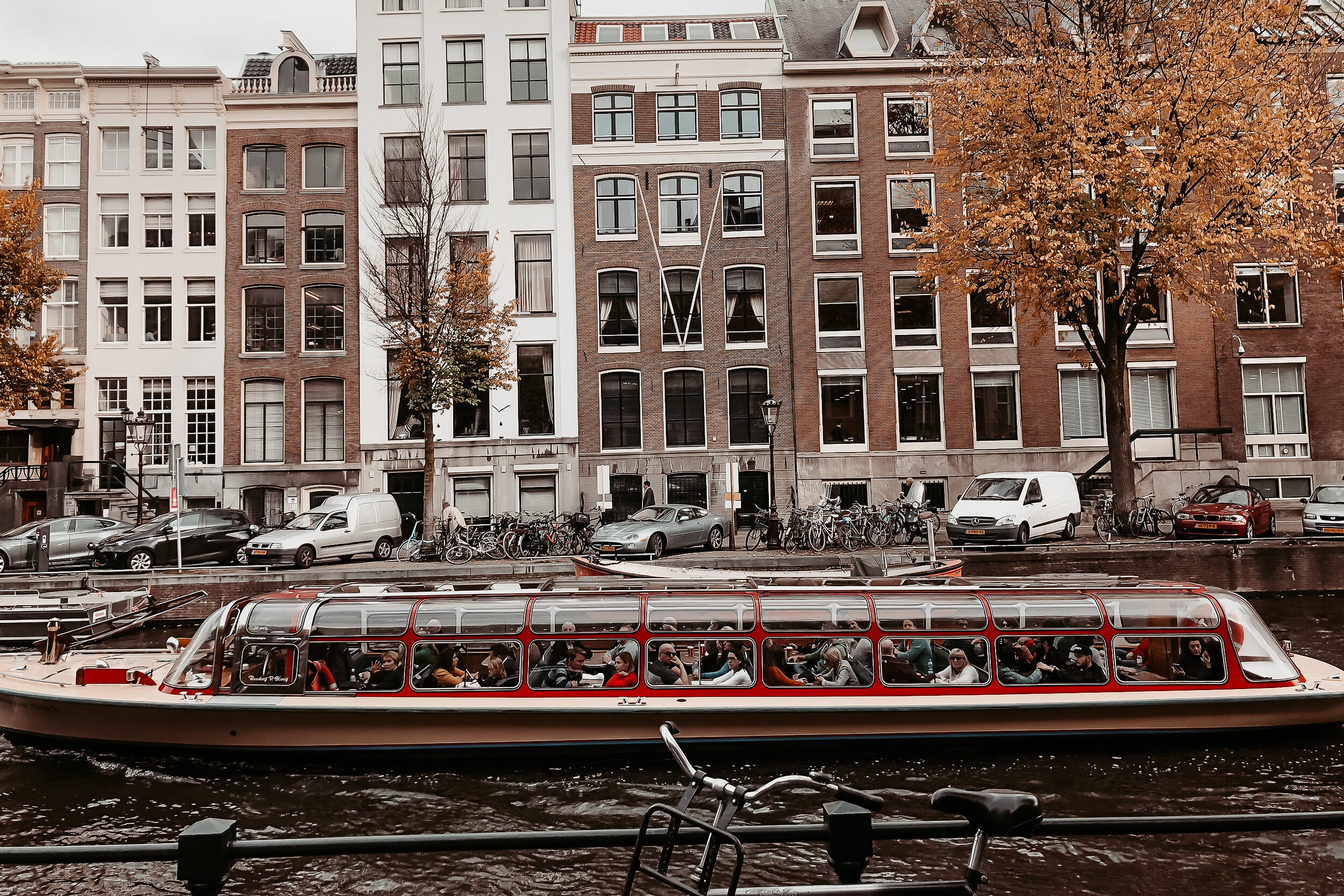
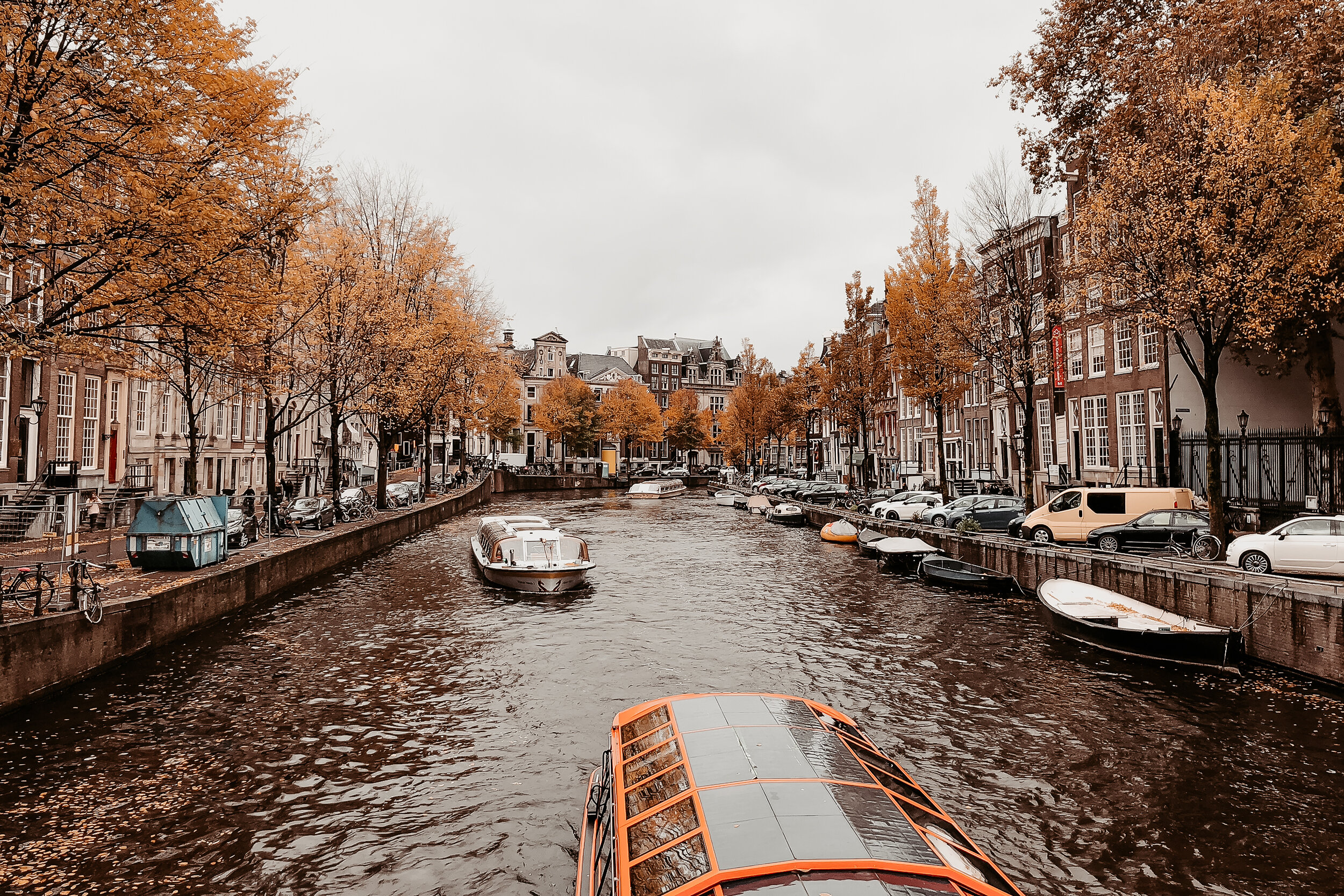
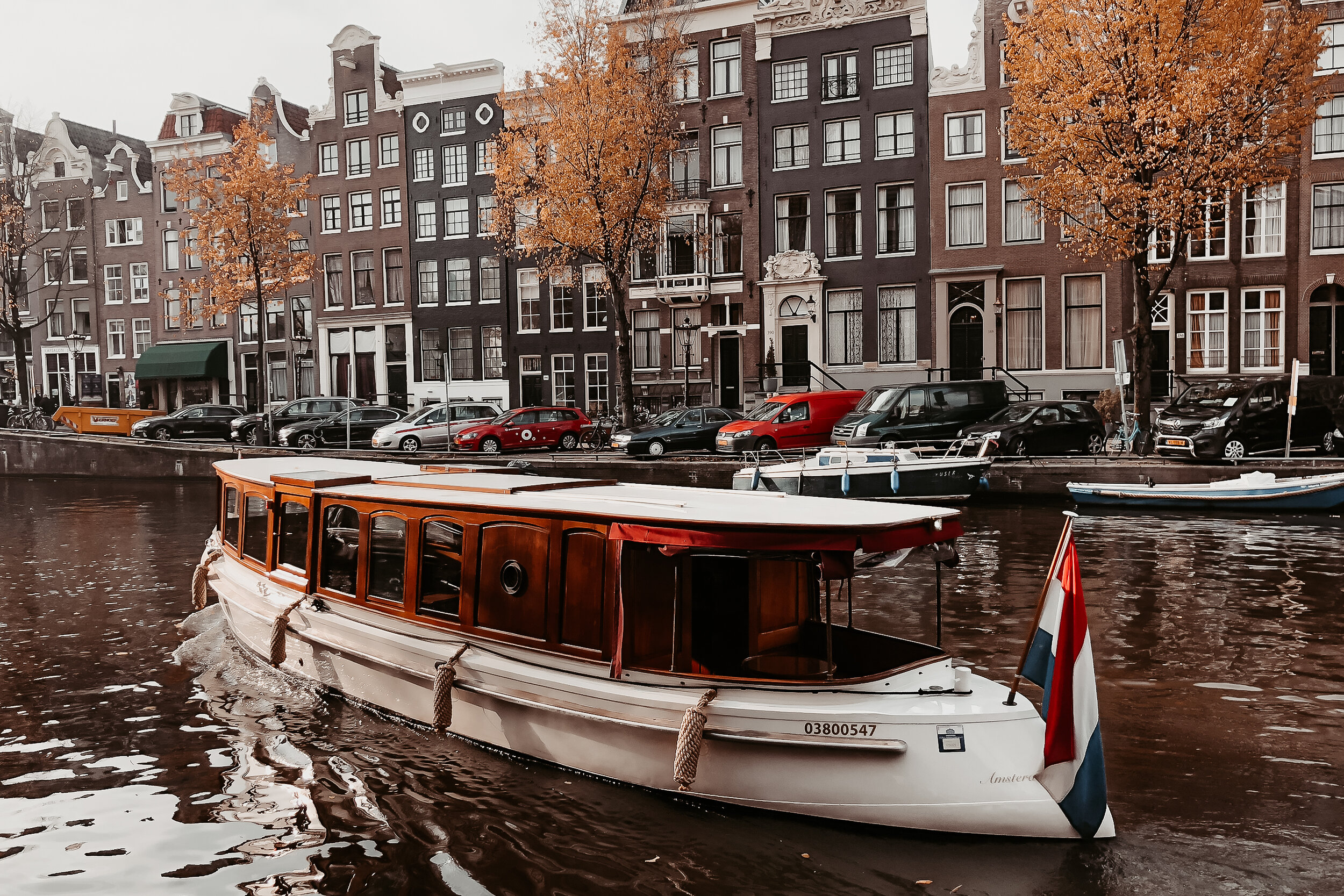
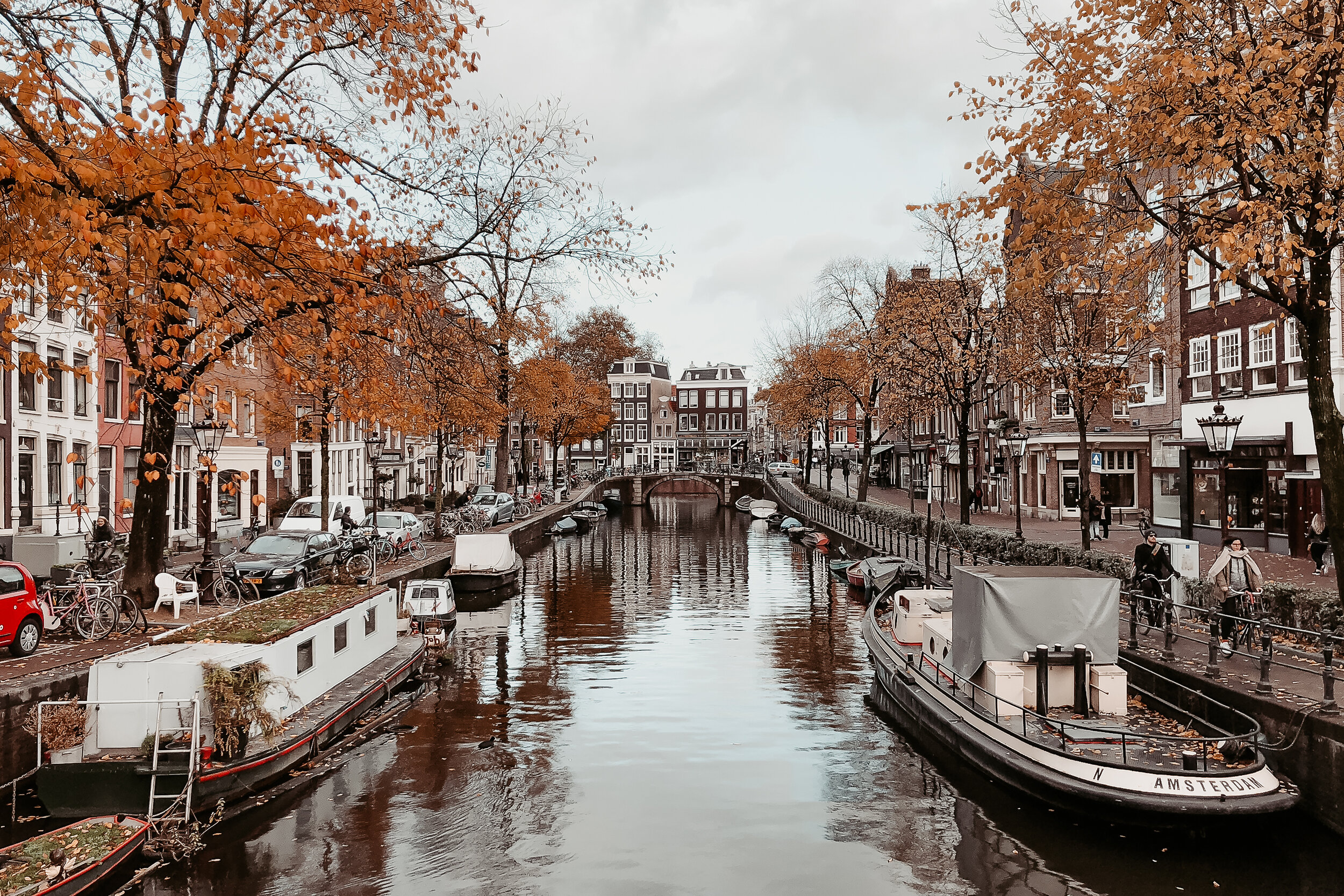
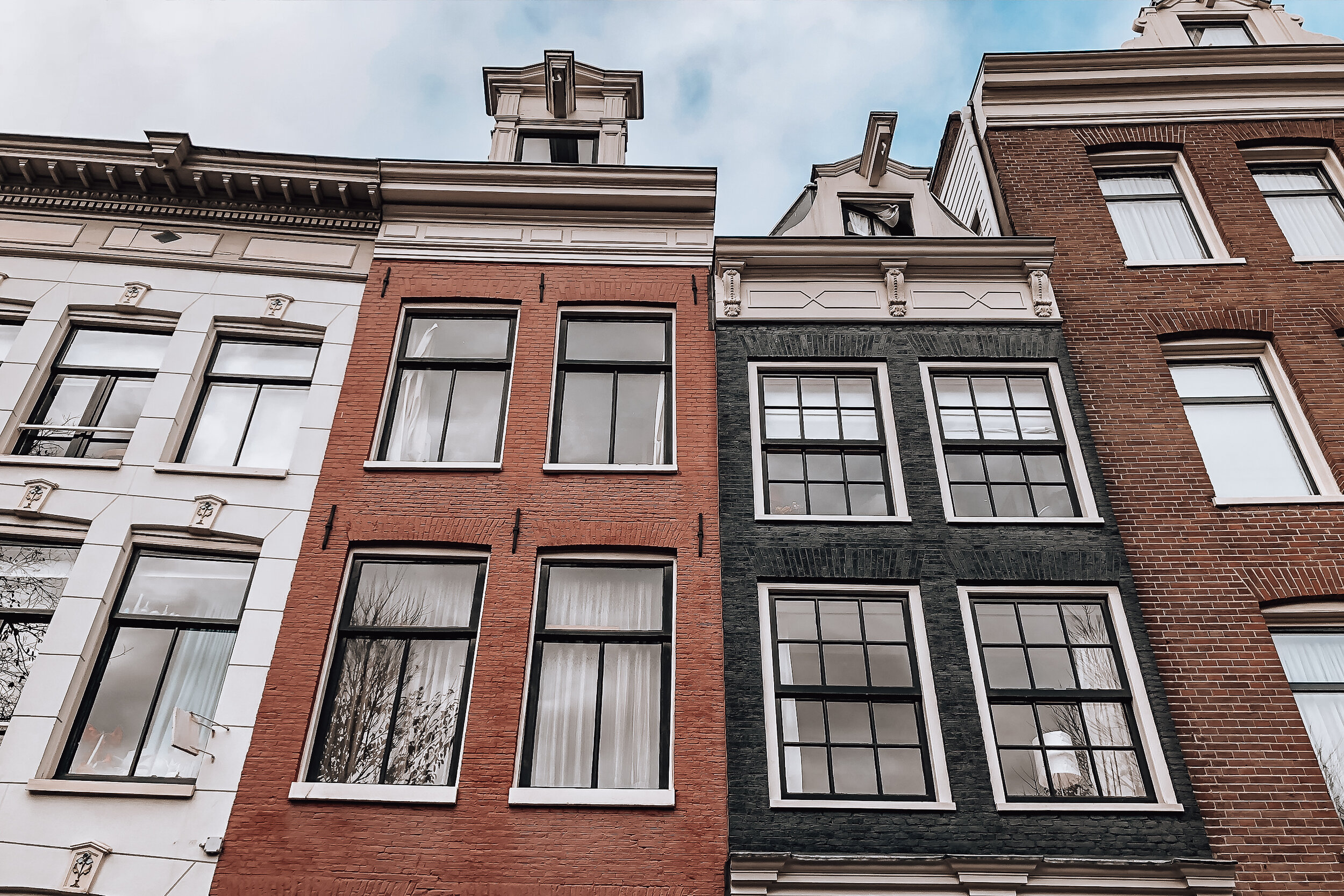
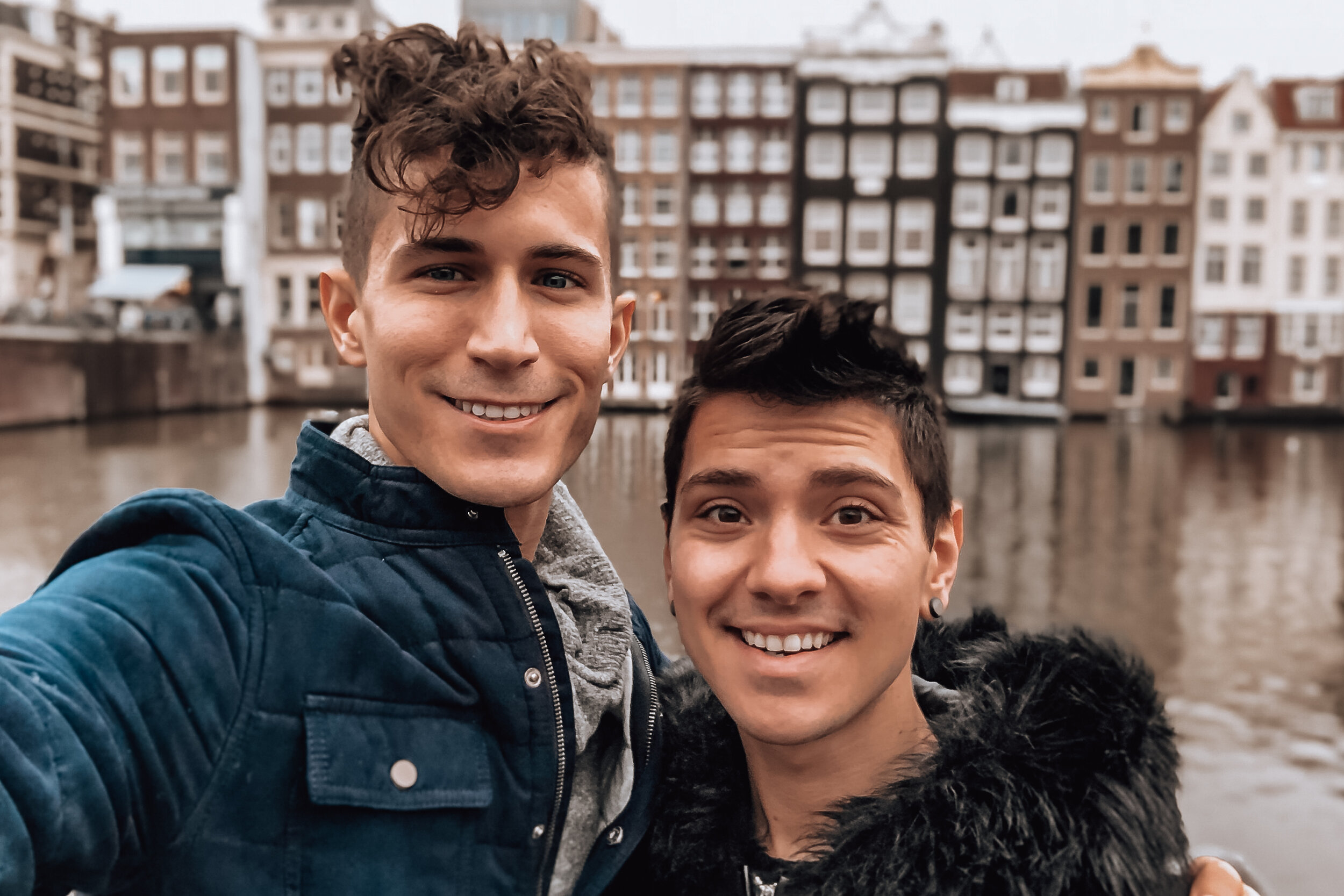
Cruise the Canals
During the first evening of our trip, we took a leisurely cruise through the canals while sipping on wine and sampling Dutch cheeses. From within the covered boat, we looked out at the beautifully illuminated buildings, into countless house boats and admired how effortlessly the captain seemed to navigate through the narrow passageways and low bridges. Maybe it was the jet-lag or all the wine but the cruise eased us into a perfect state of tiredness and relaxation.
There are several ways to easily experience the canals. Here are some of the other options we considered:
Canal Cruise. Multiple companies offer canal tours and rides too and from various points around the city. All of which are competitively priced, well reviewed and routinely operating. We booked through Stromma. Outside of the wine and cheese cruise, there are traditional sightseeing options, brunch or dinner cruises and open boat tours.
Plastic Whale. Go “plastic fishing” and help clean the waterways of plastic waste that would inevitably flow into the oceans. Book here.
Salon Boat. Charter a private or small group tour on one of these elegant wooden boats. Book here.
SUP or Kayak. Paddle through the canals on a stand up paddle or kayak.
Neighborhoods
De Pijp. The neighborhood has a local vibe and attracts less tourists than more central parts of the city. It is home to one of the city’s largest markets, Albert Cuyp Market, and numerous cafes and brunch spots. We went on a cafe crawl sipping on different brews across the neighborhood.
Oud West. This expansive neighborhood is a great place to visit for its many restaurants, bars, markets, vintage and interior design shops. It’s nearby the city’s largest park, Vondelpark, and home to Ten Katemarkt Market and the De Hallen Food Hall.
Amsterdam Noord. Is a former industrial neighborhood that’s become home to a large artist community. Many former warehouses have been transformed into waterfront bars, flea markets and art studios. It’s accessible via a ferry near Central Station.
IJburg. This neighborhood is located on the east side of Amsterdam on an artificial island built over the past 25 years. As a result, all the homes and building are ultra modern while remaining reminiscent of the canal houses in the older neighborhoods closer to the city center.
Red Light District. The RLD is one of the oldest and probably most well known neighborhoods in Amsterdam. It’s famous for its historic architecture, narrow streets, sex-workers, nightly peep shows and coffee shops. Even if you’re not inserted in the scene, it’s an exciting neighborhood to walk through day or night.
Reguliersdwarsstraat & Kerkstraat. Two streets with a number of gay owned businesses and nightlife
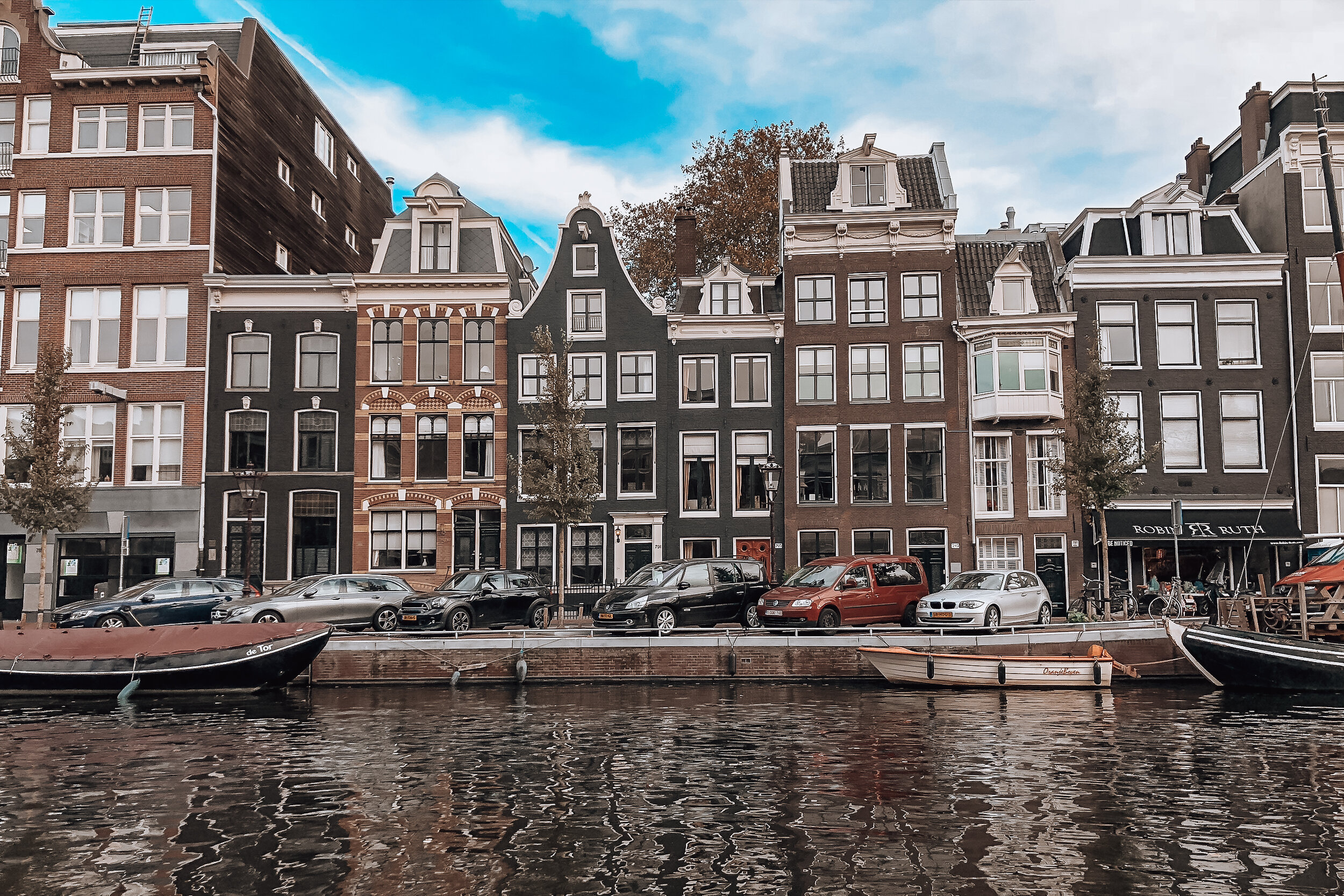
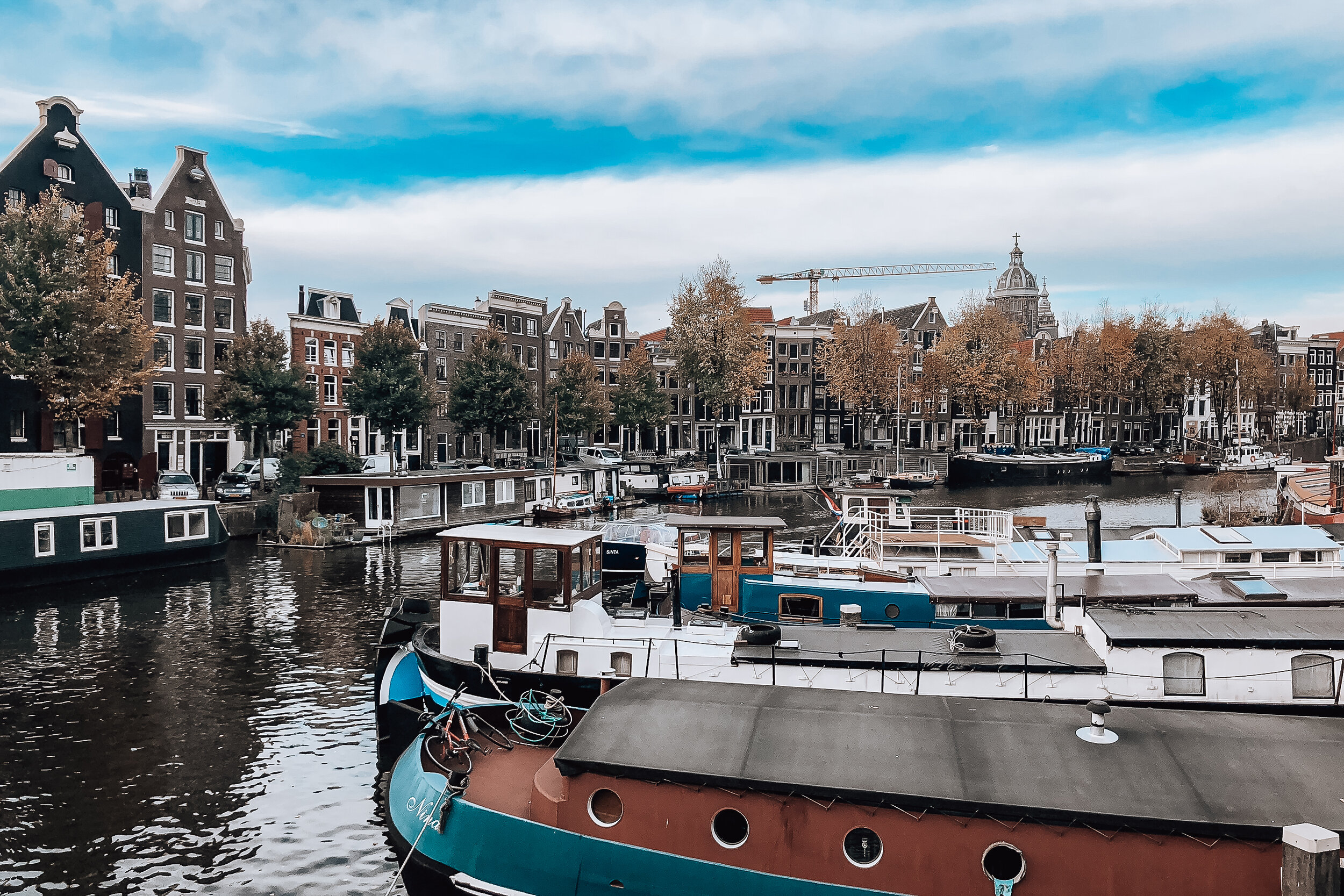
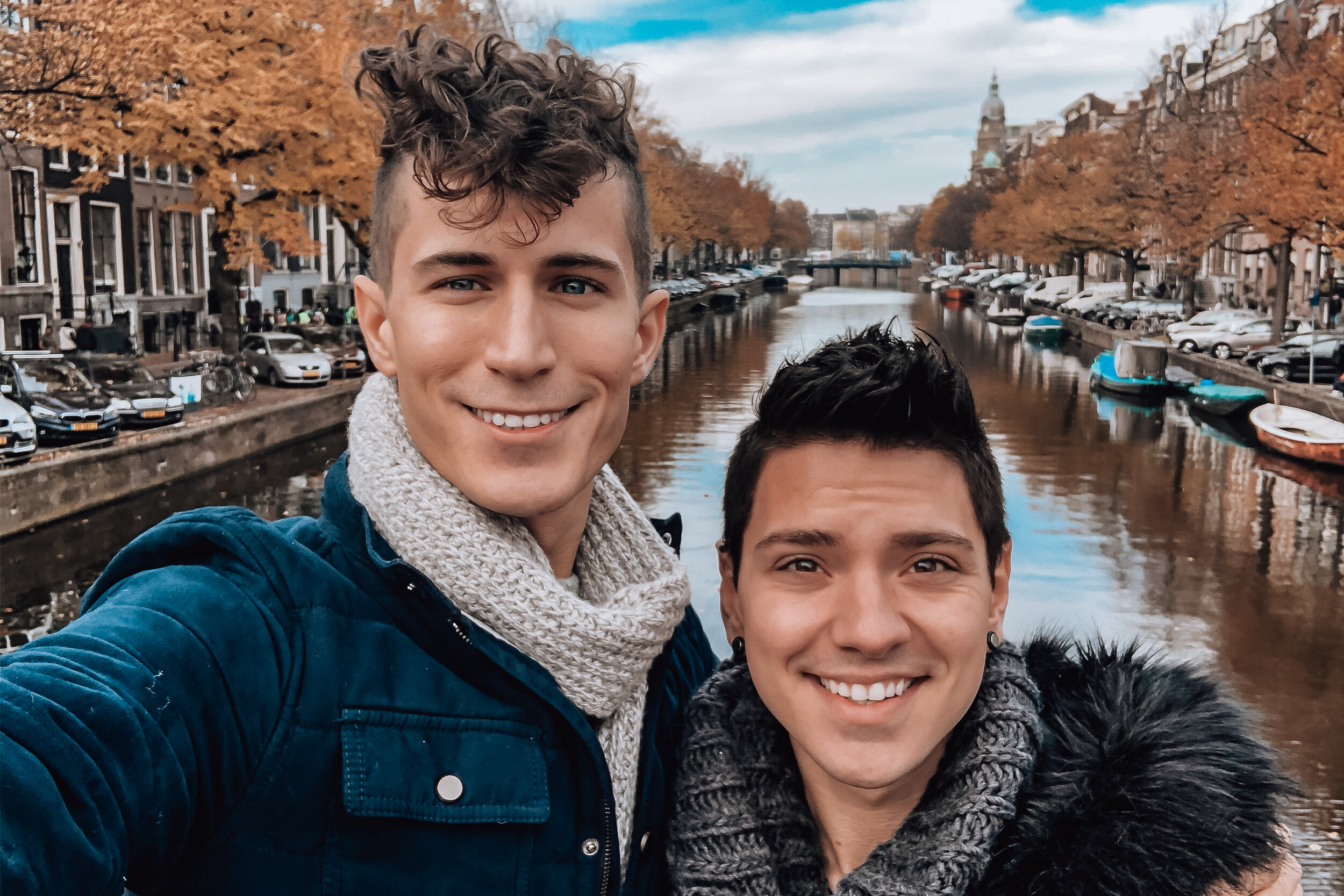
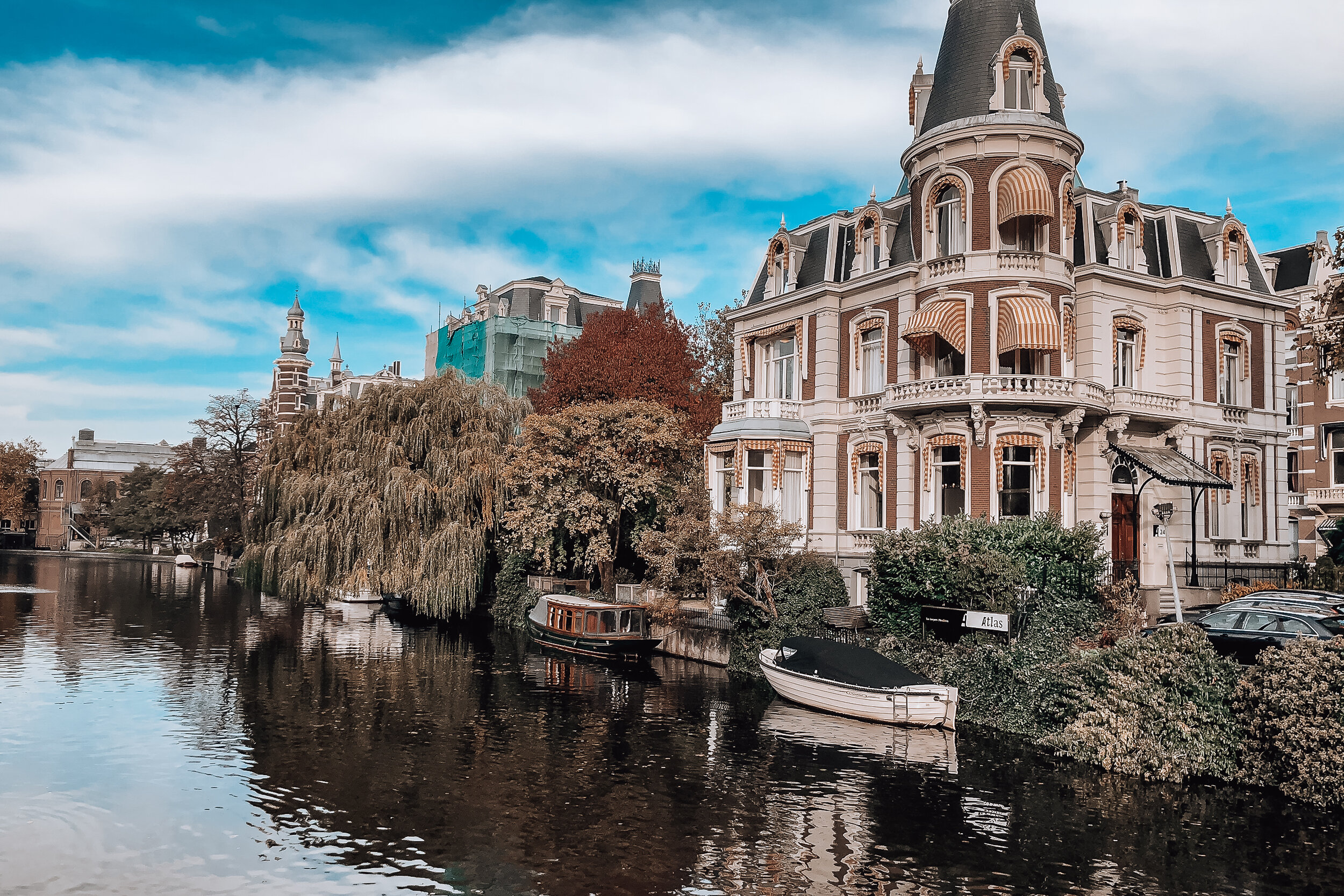
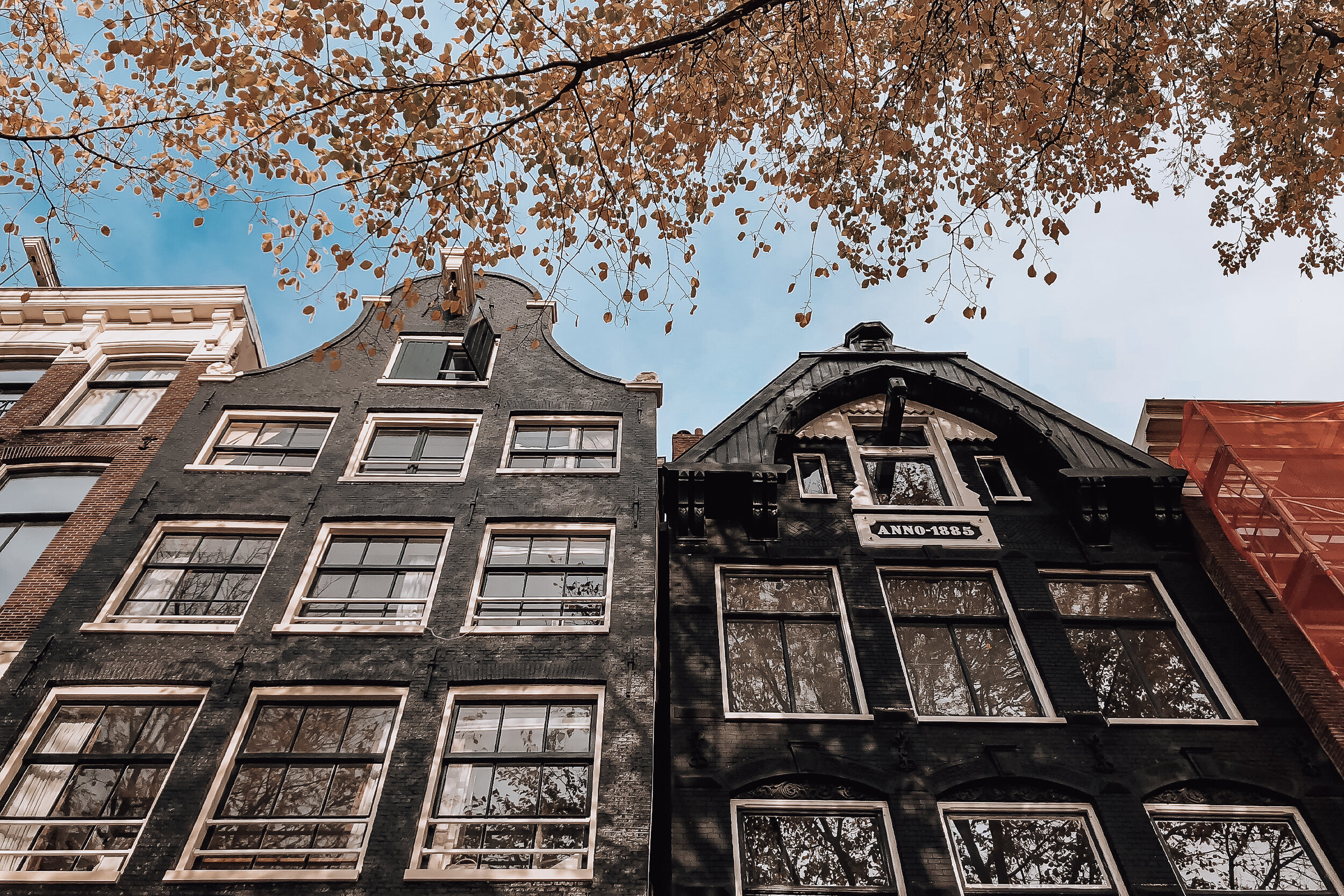
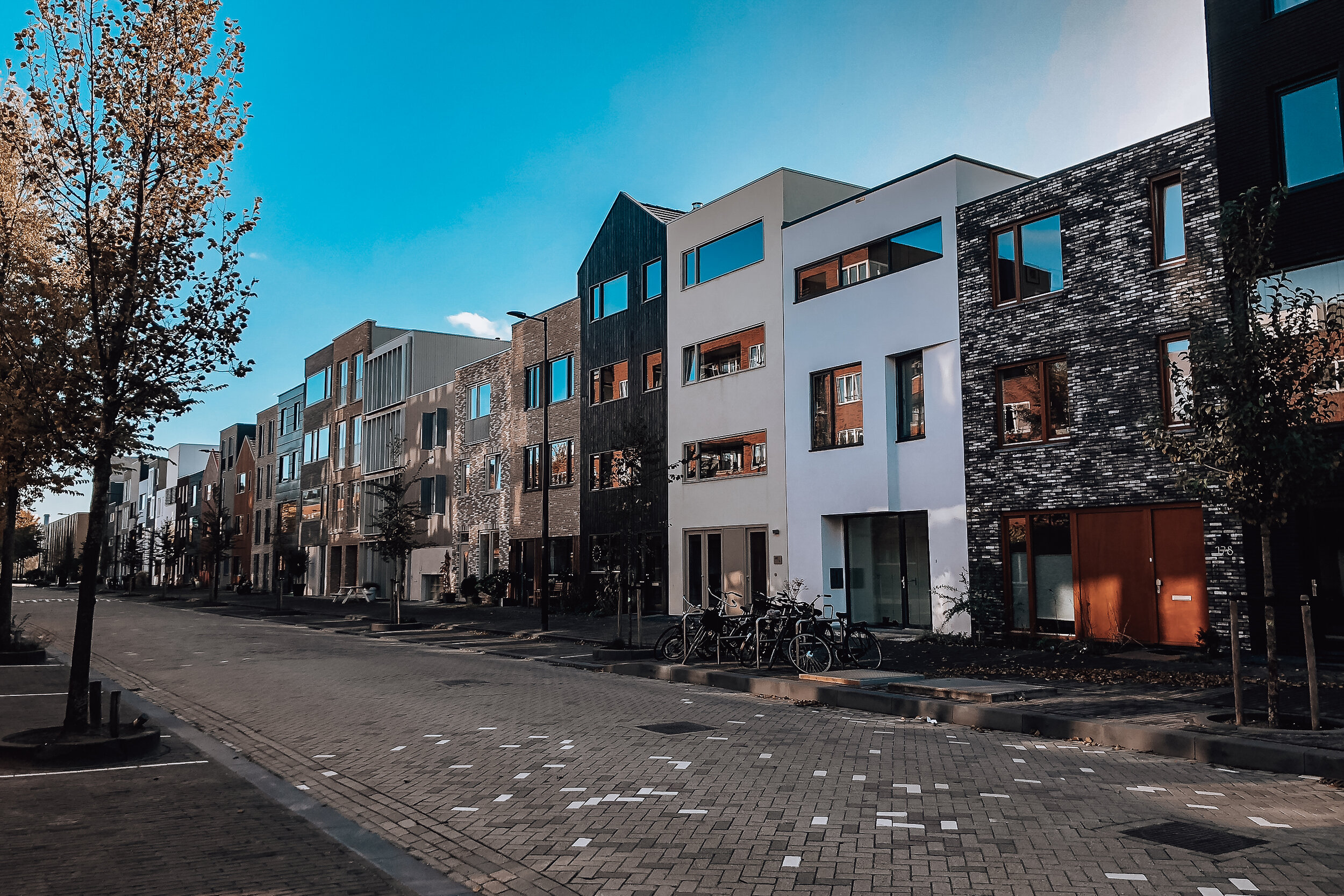
Sights & Museums
The Canal Belt. The canals define Amsterdam branching out in semi-circles from the city’s center. The inner 4 rings are designated as a UNESCO World Heritage Sight. Spend time exploring them, admiring the architecture and house boats.
Canal Houses. The narrow, ornate and sometimes slanted canal houses can be seen throughout Amsterdam.
Dancing Houses. A series of highly slanted canal houses along the Amstel
The Golden Bend. A bend along the Herengracht canal with the oldest and most stately canal houses
Twins. Look for twins, two identical houses built side by side
Museumplein. A public square surrounded by multiple museums. Come here to climb and sit on the I Amsterdam sign
Rijksmuseum. The national art museum housing Dutch works created throughout the past several centuries. The most famous pieces to see are Vermeer’s The Milkmaid and Rembrandt’s The Night Watch. The museum is also home to the Cuypers Library, a picturesque art history and research library
Van Gogh Museum. This museum houses hundreds of the artist’s works and tells the story of his life from when he began painting until his death. If you appreciate Van Gogh’s work, this museum is truly worth visiting. Some notable pieces include a variety of his self portraits, The Potato Eaters, Sunflowers and the Wheat Field with Crows.
Vondelpark. The city’s largest park and green space. It’s a calm area for picnicking, bicycling and escaping the energy along the canals and streets.
Begijnhof. A small grassy oasis surrounded by brick row houses.
Homomonument. A series of three triangular monuments built into the square to honor the LGBTQ+ people persecuted during the Holocaust. Next to it is the Pink Point, a resourceful gay tourist info center.
Anne Frank House. Visit the home where Anne Frank and her family hid from persecution during WWII.
Food & Drink
Stroopwafels. Thin waffle crisps with caramel layered in-between. Use them to cover your hot coffee until the inside gets gooey. The best place in town to buy them is Van Wonderen Stroopwafels. Outside of the classic version, they top and decorate artisan batches with coconut, marshmallows, chocolate, nuts and sprinkles.
Deep Dish Dutch Apple Pie. A classic dessert but even more special when baked deep dish. Check out Wenkel 43 or look for cafes serving it.
Pickled Herring. Raw herring served with pickles and onions. It can be found at street carts around the city, one of which is Haring & Co.
Frites & Mayo. Another street food, look out for Wil Graanstra Friteshuis. Order them twice fried!
Gouda. One of the most well known Dutch cheeses. Fromageries around the city liberally hand out samples of the different favors and ages.
Bitterballen & Kroketten. Two versions of a potato, sauce and meat mixture fried in a ball or cylinder.
Poffertjes. Dutch pancakes. They are fluffy, tiny, yeasted and buckwheat pancakes covered in powdered sugar.
Gin and Tonic. Almost every bar offers their own take on this classic cocktail by infusing the drinks and offering creative mixes.
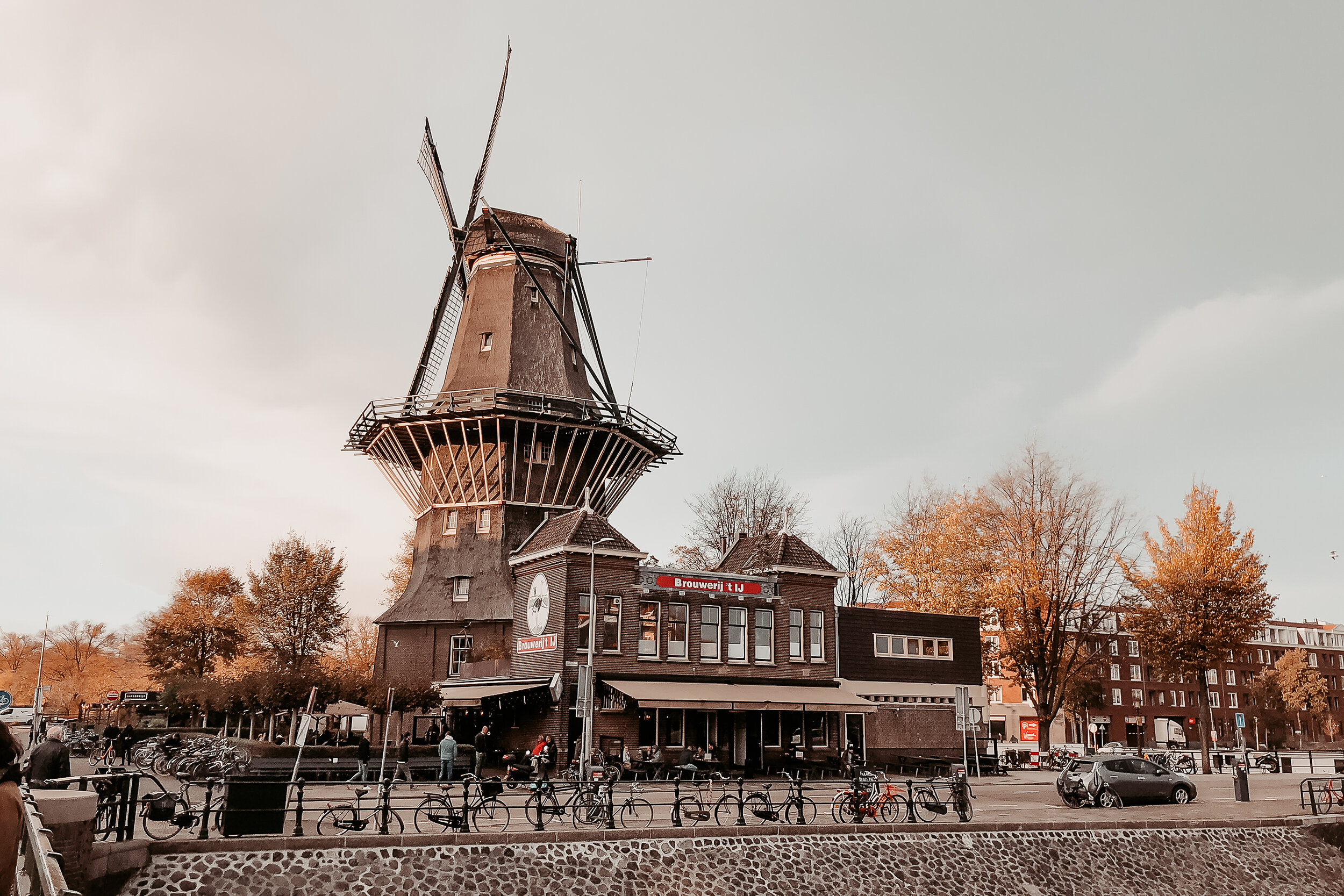
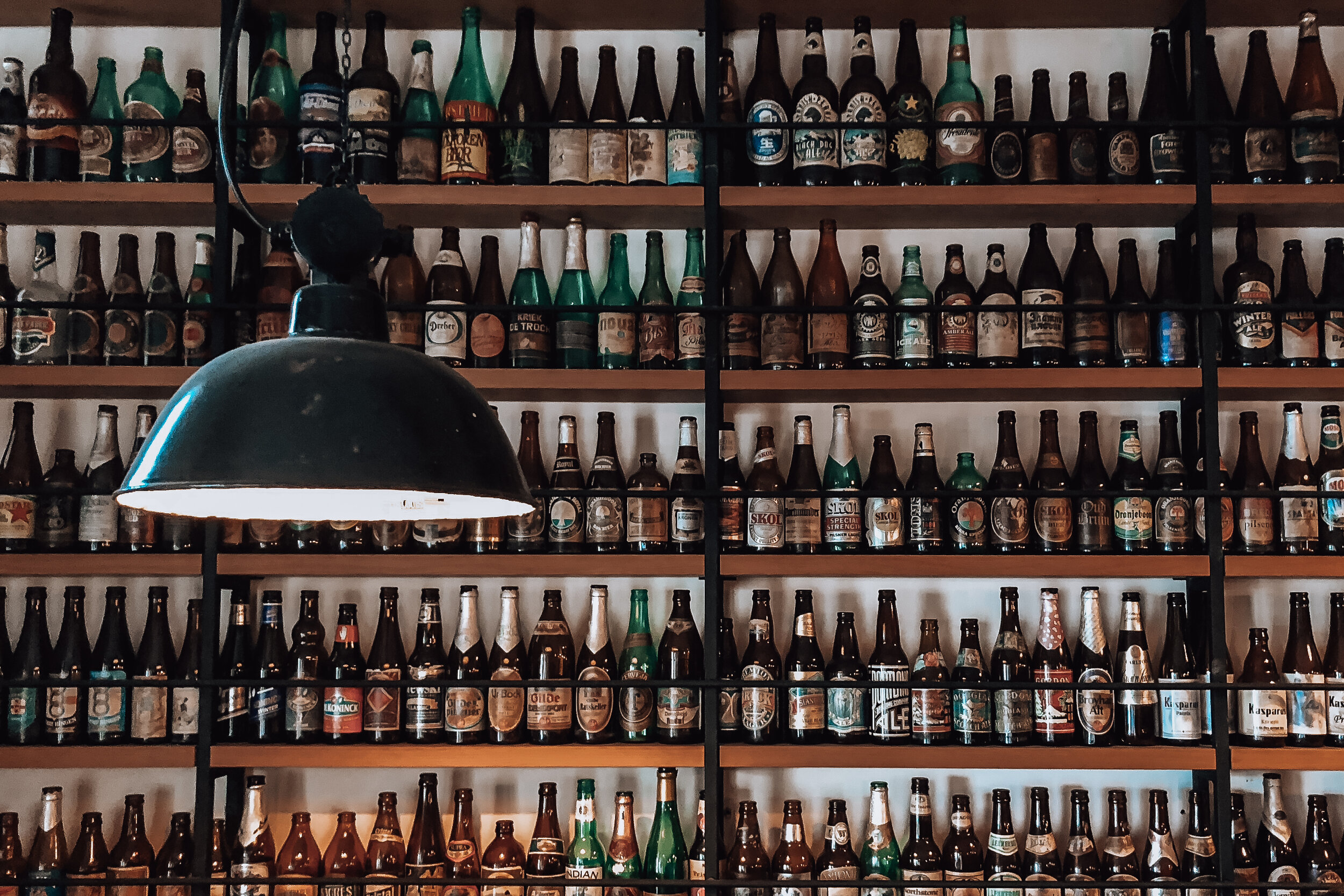
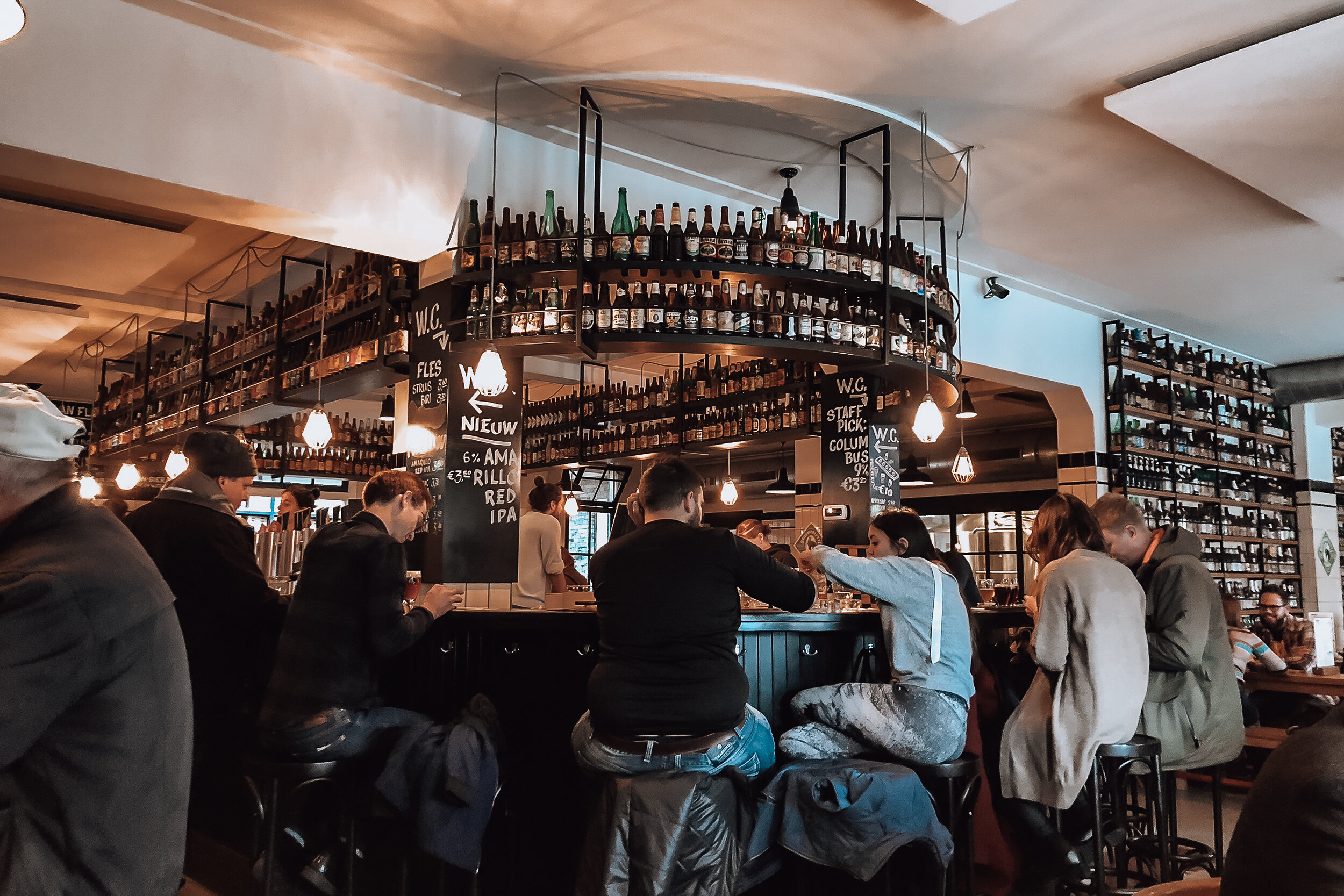
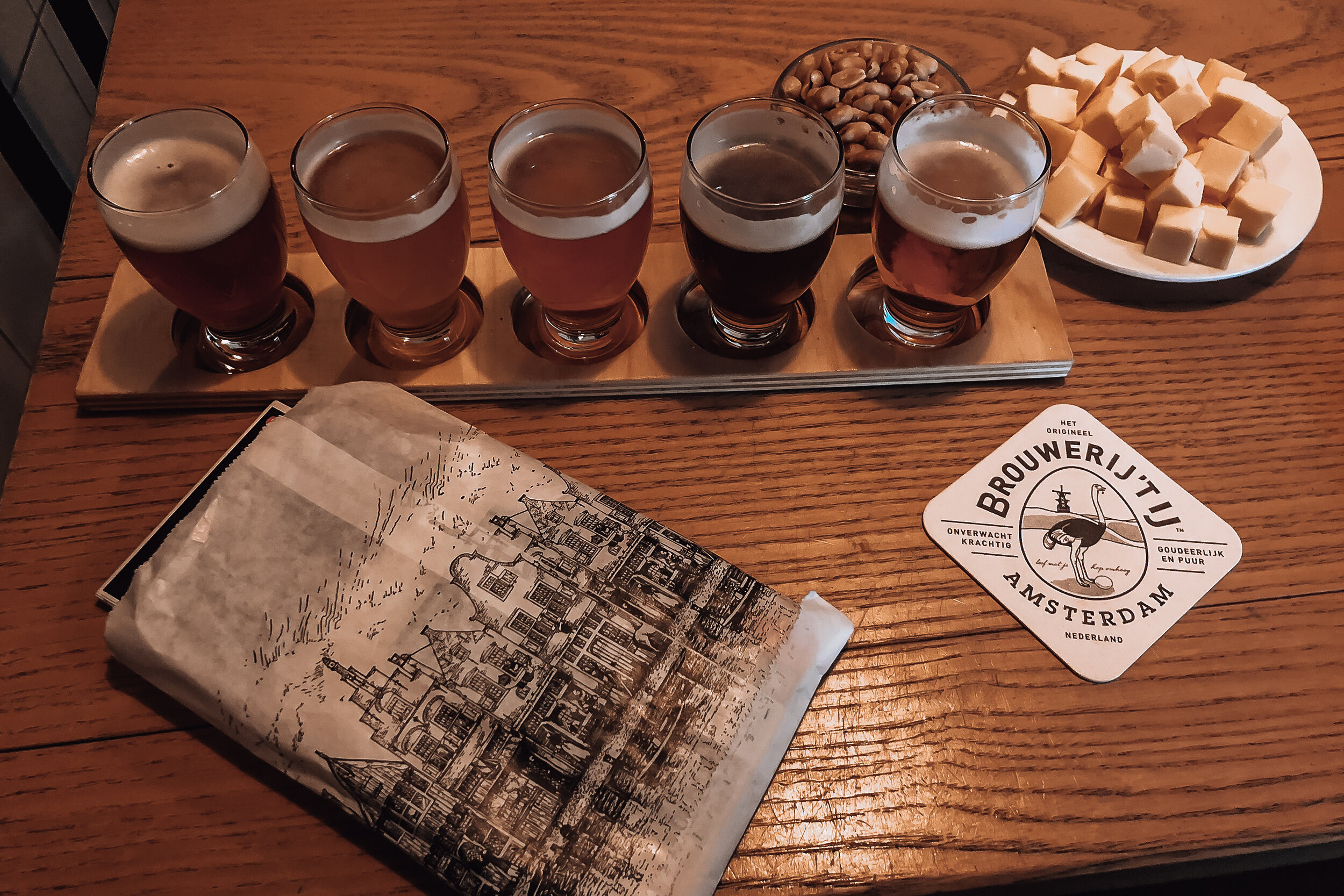
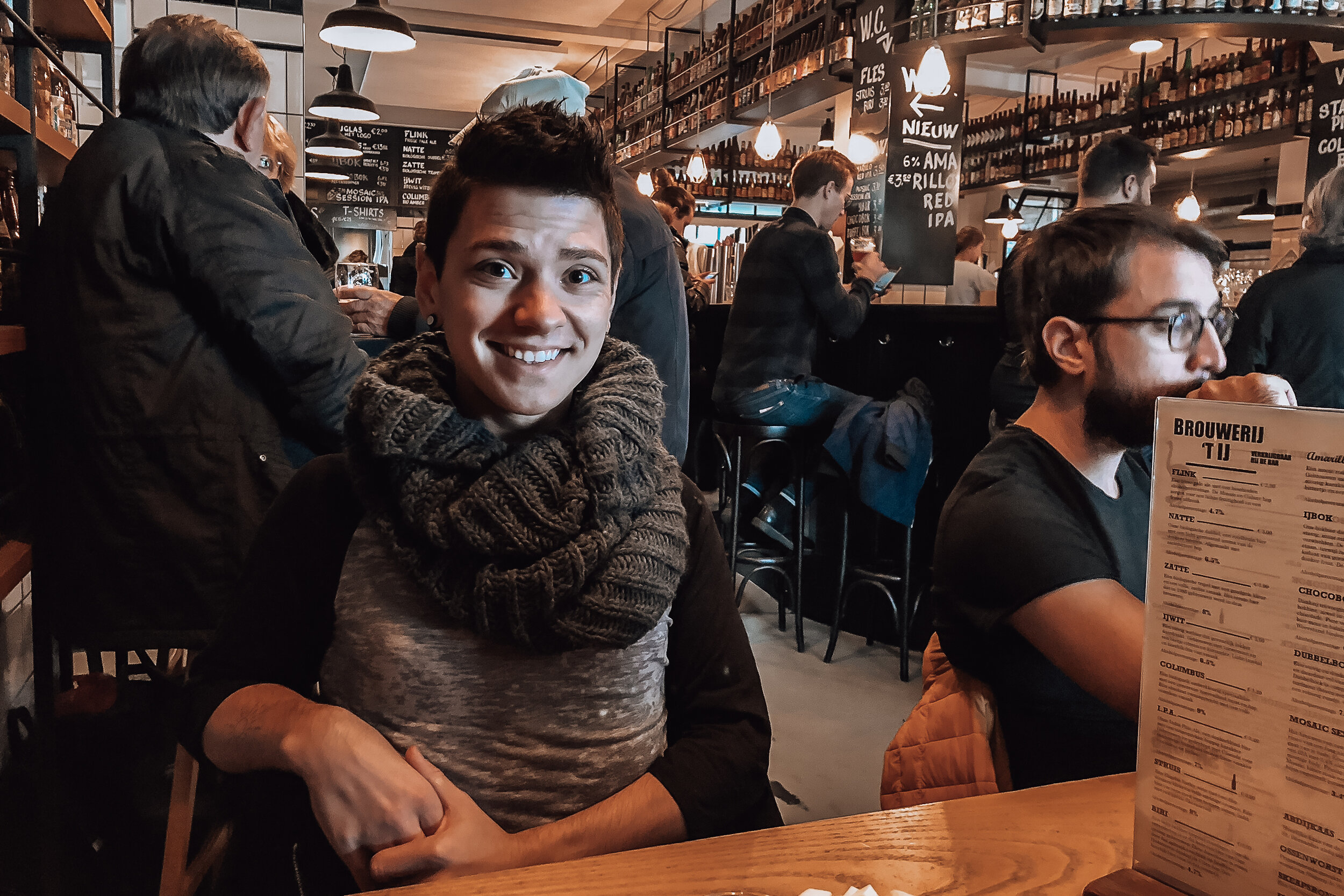
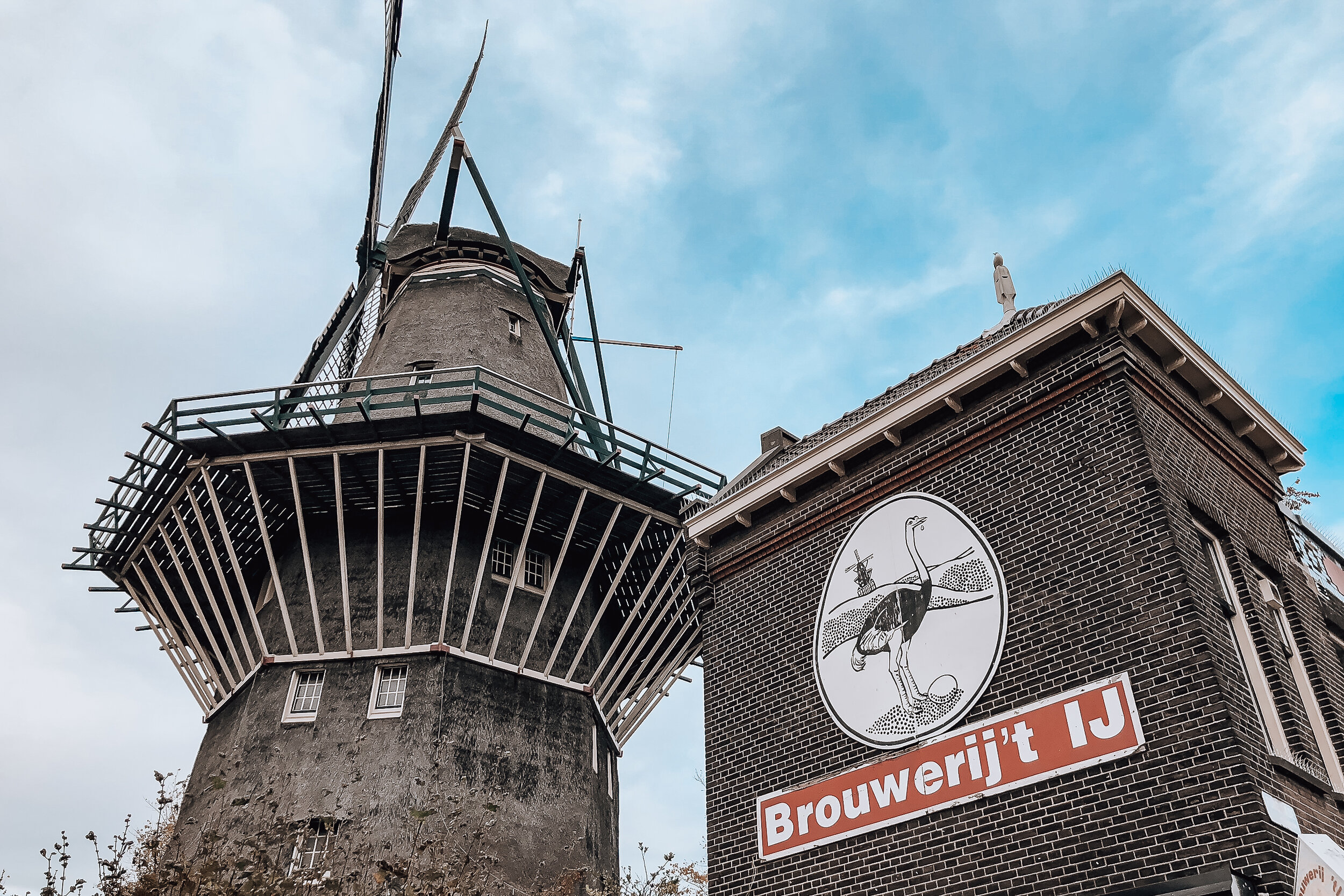
Restaurants & Bars
There are endless options when it comes to dining in Amsterdam. Whether along a canal, in a historic building, near a windmill or simply on the sidewalk. We never had a bad meal anywhere we dined. One thing we quickly learned is that you need a reservation for dinner at most restaurants at least 24 hours in advance, especially on weekends! Here are number of a favorite spots enjoy a meal or drink.
Bakers and Roasters. An amazing brunch spot with all types of eggs inspired by different cultures, several fruit dishes, vegetarian meals and strong coffee. We went for the banana nut French toast and eggs royal.
Van Speyk. A romantic brick walled restaurant with glittering chandeliers, Dutch classics and North Sea seafood.
Balthazars Keuken. A tiny homestyle restaurant with a daily three course menu. Make a reservation!
Cafe Restaurant Stork. A waterfront restaurant within a warehouse style building serving a variety of seafood.
IJ Brewerey. A brewery and beer garden located next to a 16th century windmill.
Pulitzer's Bar. A dark and moody reading room-like lounge offering high end cocktails and small bites
Café ‘t Mandje. A very eclectic and welcoming gay bar that’s been around since 1927.
Venus & Adonis. A cozy restaurant and cocktail bar specializing in craft gin & tonics
Cafes
Before visiting Amsterdam, we read somewhere that the Dutch consume more coffee per person than any other country in the world. As avid coffee drinkers ourselves, we decided to visit a number of cafes while in town. Here are a few of our favorite spots to sip on a coffee at any time of day.
Scandinavian Embassy. Slow and drip brewed coffees with cinnamon rolls.
Trakteren. A great spot for cappuccinos with cute latte art.
Lot Sixty One. House roasted coffee and tasty sweets.
Koffieschenkerij. A cafe located in the the historic sacristy of the Oude Kerk, Amsterdam’s oldest building, with a spacious outdoor cafe.
Back to Black. A corner cafe with a bohemian feel and an array of sweets.
Quartier Putain. A two level cafe located on the edge of the Red Light District.
Shopping & Markets
There are many opportunities to shop and visit markets in Amsterdam. The city is filled with small business and shops tucked into the first floors of the canal houses. Almost every neighborhood hosts its own market, whether it be mostly produce, clothes, antiques or a combination of them all.
De 9 Straatjes. This is probably one of our favorite areas to walk through. This district within the Canal Belt known for its picturesque streets lined with boutiques, design shops, concept stores and clothing retailers. We spent hours one afternoon walking from shop to shop, mostly looking, at all the pretty things in search of something affordable to bring home.
Nieuwe Spiegelstraat. A two block section of the street lined with antique shops and galleries.
Ten Katemarkt. An outdoor weekend market selling produce, cheeses, spices, breads, mushrooms, seafood, meats and street food located next to De Hallen, A large indoor food hall with a variety of Dutch and international cuisines, several bars offering local beers and artisan gin and tonics.
Flea Market Ij-Hallen. A large flea market with hundreds of booths scattered between two warehouses and an outdoor lot. It is a great places to buy vintage home goods, furniture, jewelry, clothing and misc items. The market is held on the second Saturday of every month.
Waterlooplein Market. A 300 booth vintage and flea market open from Monday - Saturday. The booths are filled with records, cameras, antiques and bohemian clothes. Several food carts serve Dutch favorites like stroopwafels, poffertjes, coffee and frites.
Coffeshops. Places that sell cannabis, edibles and space-cakes (cannabis infused desserts) They provide a place for people to enjoy them. Check out Boerejongens Coffeeshop Sloterdijk, a well reviewed coffeeshop located outside of the central neighborhoods and RLD.
Getting Around
Getting around Amsterdam is one of the most enjoyable ways to explore and experience the city! There are countless options from bicycling, taking a canal tour, riding the tram or simply walking.
Biking. The preferred method of transit. There are as many bikes as people in the city and a number of companies to rent from including: Ajax Bike, Yellow Bike and Mac Bike. Daily rentals range from €12 and €15, some rentals require a security deposit or minimal insurance fee incase of damage or theft.
Public Transit. The most reliable and economical option to quickly cross the city. There are multiple options that let you ride the bus, tram and metro all in one.
GVB Transit Card. Unlimited transit at on buses, trams and metros for 96 hours for €22.50.
GVB Transit Ticket. Individual 1 hour ticket for buses, trams and metros costs €3.20.
Amsterdam Card. Unlimited transit at on buses, trams and metros, includes access to the museums and a canal cruise. The pass last for 72 hours and costs €84.
Tickets can be purchased on any form of public transit (Pricing as of 2018)
Taxis and Ubers. The most expensive to get around the city. Luckily they’re almost unnecessary other than getting to/from the airport. They typically cost €45-€50 one way.
Ferry to Amsterdam Noord. Crosses the IJ River from the port behind Central Station to ADAM Tower. The ferry is free and usually departs every 15 minutes.
Tips to keep in mind
Be cautious riding bikes and watch out for cyclists when walking across streets.
Be respectful and don’t take photos of sex-workers in the RLD. This is strictly enforced.
Make reservations at restaurants you really want to eat at 24 hours in advance.
Like many places in Europe, tipping more that 10% is not required.
Avoid tourist traps near Dam Square and Central. Explore the inner canal rings and branch out further into the outer neighborhoods.
If we had more time…
The Moco Museum. Museum of Modern and Contemporary Art featuring a large collection of Banksy’s work, interactive and digital exhibits.
The Heineken Experience. Visit the Heineken Brewery, tour the facilities and cap our own bottle.
Take a Day Trip. With the countryside and multiple cities nearby: Utrecht, Rotterdam and The Hague. We recommend taking a day trip outside of Amsterdam if you have the time.
Hotel Inntel Zaandam. Spent a night at this uniquely designed hotel made to look like a stack of green country cottages typical of this area of the countryside.
Windmills. Also in Zaandam, see the several preserved Dutch windmills.
Visit during the Summer. Visit to the beach on Ijburg, kayak in the canals and participate in the Pride Festival.
Visit during the Winter. Visit when the Keizersgracht freezes over and becomes an ice rink.
















































































